(1)
1985
A Cyborg Manifesto: Science, Technology, and Socialist-Feminism in the Late Twentieth Century
Donna Haraway
Cyborg imagery can help express two crucial arguments in this essay: first, the production of universal, totalizing theory is a major mistake that misses most of reality, probably always, but certainly now; and second, taking responsibility for the social relations of science and technology means […] embracing the skilful task of reconstructing the boundaries of daily life, in partial connection with others, in communication with all of our parts. […] Cyborg imagery can suggest a way out of the maze of dualisms (x) in which we have explained our bodies and our tools to ourselves. This is a dream not of a common language, but of a powerful infidel heteroglossia. It is an imagination of a feminist speaking in tongues to strike fear into the circuits of the supersavers of the new right. It means both building and destroying machines, identities, categories, relationships, space stories. Though both are bound in the spiral dance, I would rather be a cyborg than a goddess.
1991, Donna Haraway, in Simians, Cyborgs and Women: The Reinvention of Nature (x) (New York: Routledge, 1991), pp. 149–181; excerpt p. 181
Editor’s Note: This essay was originally published as “A Manifesto for Cyborgs: Science, Technology, and Socialist Feminism in the 1980s,” Socialist Review 80 (1985): pp 65–108. Critiques of “A Cyborg Manifesto” are wide-ranging: critics argue that the text assumes the reader is familiar with North American cultural capital; that it does not include critical engagement with disability; and that it creates a false binary between the cyborg and goddess, among other issues. As Haraway notes, the essay took on a life of its own, reaching a virality in its own time that continues today, and still remains a fruitful entry into a form of cyberfeminism. —MS
https://web.archive.org/web/20120214194015/http://www.stanford.edu/dept/HPS/Haraway/CyborgManifesto.html https://monoskop.org/images/4/4c/Haraway_Donna_1985_A_Manifesto_for_Cyborgs_Science_Technology_and_Socialist_Feminism_in_the_1980s.pdf
Cyborg imagery can help express two crucial arguments in this essay: first, the production of universal, totalizing theory is a major mistake that misses most of reality, probably always, but certainly now; and second, taking responsibility for the social relations of science and technology means […] embracing the skilful task of reconstructing the boundaries of daily life, in partial connection with others, in communication with all of our parts. […] Cyborg imagery can suggest a way out of the maze of dualisms (x) in which we have explained our bodies and our tools to ourselves. This is a dream not of a common language, but of a powerful infidel heteroglossia. It is an imagination of a feminist speaking in tongues to strike fear into the circuits of the supersavers of the new right. It means both building and destroying machines, identities, categories, relationships, space stories. Though both are bound in the spiral dance, I would rather be a cyborg than a goddess.
1991, Donna Haraway, in Simians, Cyborgs and Women: The Reinvention of Nature (x) (New York: Routledge, 1991), pp. 149–181; excerpt p. 181
Editor’s Note: This essay was originally published as “A Manifesto for Cyborgs: Science, Technology, and Socialist Feminism in the 1980s,” Socialist Review 80 (1985): pp 65–108. Critiques of “A Cyborg Manifesto” are wide-ranging: critics argue that the text assumes the reader is familiar with North American cultural capital; that it does not include critical engagement with disability; and that it creates a false binary between the cyborg and goddess, among other issues. As Haraway notes, the essay took on a life of its own, reaching a virality in its own time that continues today, and still remains a fruitful entry into a form of cyberfeminism. —MS
https://web.archive.org/web/20120214194015/http://www.stanford.edu/dept/HPS/Haraway/CyborgManifesto.html https://monoskop.org/images/4/4c/Haraway_Donna_1985_A_Manifesto_for_Cyborgs_Science_Technology_and_Socialist_Feminism_in_the_1980s.pdf
(2)
1987
Systers
Anita Borg
Systers provides a private, safe online forum for women involved in technical aspects of computing. Our members gain support by networking, sharing advice and experiences, and collaborating on various projects. We welcome women of all ages and at any stage of their studies or careers.
Anita Borg created Systers in 1987 when she and 12 other women launched a small electronic mailing list for women in “systems.” Her goal was to “increase the number of women in computer science and make the environments in which women work more conducive to their continued participation in the field.”
Anita’s vision continues to inspire and drive members of Systers as they help one another through professional challenges and career decisions. Many of our members have shared their personal stories, recounting how Systers changed their lives, and reflecting on the importance of this community.
Today, Systers is the world’s largest email community of women in technical computing roles. We welcome more than 8,500 members from more than 65 countries. We also host 23 different affinity groups where women technologists can connect with and offer support to members of their self-identified cultures.
1987–present, founder Anita Borg, https://systers.org/, excerpt from https://anitab.org/our-communities/systers/; submitted by Sol Martinez Demarco.
Editor’s Note: Noted in Wikipedia, https://en.wikipedia.org/wiki/Systers, as of 2012, more than 3000 members were subscribing to the Systers’ mailing list. Previously, the mailing list was maintained by Her Systers’ Keeper, Robin Jeffries, from 2000 to 2012. The next Systers' Keeper was Rosario Robinson. During the Grace Hopper Celebration of Women in Computing (GHC) at Houston Texas in 2018, it was announced that Zaza Soriano will be the new Systers' Keeper.
Systers provides a private, safe online forum for women involved in technical aspects of computing. Our members gain support by networking, sharing advice and experiences, and collaborating on various projects. We welcome women of all ages and at any stage of their studies or careers.
Anita Borg created Systers in 1987 when she and 12 other women launched a small electronic mailing list for women in “systems.” Her goal was to “increase the number of women in computer science and make the environments in which women work more conducive to their continued participation in the field.”
Anita’s vision continues to inspire and drive members of Systers as they help one another through professional challenges and career decisions. Many of our members have shared their personal stories, recounting how Systers changed their lives, and reflecting on the importance of this community.
Today, Systers is the world’s largest email community of women in technical computing roles. We welcome more than 8,500 members from more than 65 countries. We also host 23 different affinity groups where women technologists can connect with and offer support to members of their self-identified cultures.
1987–present, founder Anita Borg, https://systers.org/, excerpt from https://anitab.org/our-communities/systers/; submitted by Sol Martinez Demarco.
Editor’s Note: Noted in Wikipedia, https://en.wikipedia.org/wiki/Systers, as of 2012, more than 3000 members were subscribing to the Systers’ mailing list. Previously, the mailing list was maintained by Her Systers’ Keeper, Robin Jeffries, from 2000 to 2012. The next Systers' Keeper was Rosario Robinson. During the Grace Hopper Celebration of Women in Computing (GHC) at Houston Texas in 2018, it was announced that Zaza Soriano will be the new Systers' Keeper.
(3)
1989
Haecksen
Chaos Computer Club
We are a group of female, intersex, non-binary, trans and agender Hackers, called Haecksen, mostly from German speaking areas. Our common goal is a more diverse tech scene. We are a part of the Chaos Computer Club (CCC) and our main communication channel is a mailing list. We are now more than 450 people, mostly from German speaking areas. We currently have local groups in Stuttgart, Hamburg, Hannover, Karlsruhe and Berlin and we meet regularly at bigger CCC events and at our (at least) annual “geekends”. You can get in touch with us by writing to info@haecksen.org.
Our group name “Haecksen” is pronounced the same way as the German word for witches: “Hexen”.
1989, https://www.haecksen.org/; submitted by Sol Martinez Demarco.
Germany

Haecksen logo from https://www.haecksen.org/
We are a group of female, intersex, non-binary, trans and agender Hackers, called Haecksen, mostly from German speaking areas. Our common goal is a more diverse tech scene. We are a part of the Chaos Computer Club (CCC) and our main communication channel is a mailing list. We are now more than 450 people, mostly from German speaking areas. We currently have local groups in Stuttgart, Hamburg, Hannover, Karlsruhe and Berlin and we meet regularly at bigger CCC events and at our (at least) annual “geekends”. You can get in touch with us by writing to info@haecksen.org.
Our group name “Haecksen” is pronounced the same way as the German word for witches: “Hexen”.
1989, https://www.haecksen.org/; submitted by Sol Martinez Demarco.
Germany

Haecksen logo from https://www.haecksen.org/
(4)
1991
Feminism Confronts Technology
Judy Wajcman
Drawing on perspectives from radical science to feminism, I have argued that the use/abuse model that represents technology itself as neutral, and asserts that it is the human application of technology that determines whether it has beneficial or destructive effects, does not go far enough. By contrast, the social shaping approach insists that technology is always a form of social knowledge, (x) practices and products. It is the result of conflicts and compromises, the outcomes of which depend primarily on the distribution of power and resources between different groups in society. […]
The sociology of technology can only be strengthened by a feminist critique. This means looking at how the production and use of technology are shaped by male power and interests. It also means broadening the definition of technology, and tracing the origins (x) and development of “women’s sphere” technology that have often been considered beneath notice.
1991, Judy Wajcman (Cambridge: Polity, 1991); excerpt p. 162
https://www.are.na/block/7529798 https://monoskop.org/images/a/ab/Wajcman_Judy_Feminism_Confronts_Technology_1991.pdf
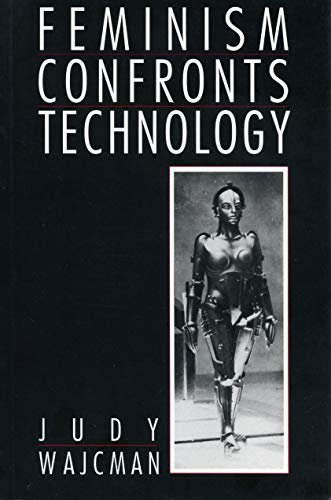
Feminism Confronts Technology, cover of the 1991 publication
Drawing on perspectives from radical science to feminism, I have argued that the use/abuse model that represents technology itself as neutral, and asserts that it is the human application of technology that determines whether it has beneficial or destructive effects, does not go far enough. By contrast, the social shaping approach insists that technology is always a form of social knowledge, (x) practices and products. It is the result of conflicts and compromises, the outcomes of which depend primarily on the distribution of power and resources between different groups in society. […]
The sociology of technology can only be strengthened by a feminist critique. This means looking at how the production and use of technology are shaped by male power and interests. It also means broadening the definition of technology, and tracing the origins (x) and development of “women’s sphere” technology that have often been considered beneath notice.
1991, Judy Wajcman (Cambridge: Polity, 1991); excerpt p. 162
https://www.are.na/block/7529798 https://monoskop.org/images/a/ab/Wajcman_Judy_Feminism_Confronts_Technology_1991.pdf

Feminism Confronts Technology, cover of the 1991 publication
(5)
1991
Simians, Cyborgs, and Women: The Reinvention of Nature
Donna Haraway
This book should be read as a cautionary tale about the evolution of bodies, politics, and stories. Above all, it is a book about the invention and reinvention of nature—perhaps the most central arena of hope, oppression, and contestation for inhabitants of the planet earth in our times. Once upon a time, in the 1970s, […] she belonged to those odd categories [US socialist-feminist, white, female, hominid biologist], invisible to themselves, which are called “unmarked” and which are dependent upon unequal power for their maintenance. But by the last essays, she has turned into a multiply marked cyborg feminist, (x) who tried to keep her politic, as well as her other critical functions, alive in the unpromising times of the last quarter of the twentieth century. […] Then, adopting an illegitimate and frightening sign, the book’s tale turns to the possibilities of a “cyborg” feminism that is perhaps more able to remain attuned to specific historical and political positionings and permanent partialities without abandoning the search for potent connections.
1991, Donna J. Haraway (New York: Routledge, 1991); excerpt p. 1
Editor’s Note: This anthology contains ten essays written between 1978 and 1989, including “A Cyborg Manifesto.” (x) —MS
https://www.routledge.com/Simians-Cyborgs-and-Women-The-Reinvention-of-Nature/Haraway/p/book/9780415903875 https://archive.org/details/simianscyborgswo0000hara
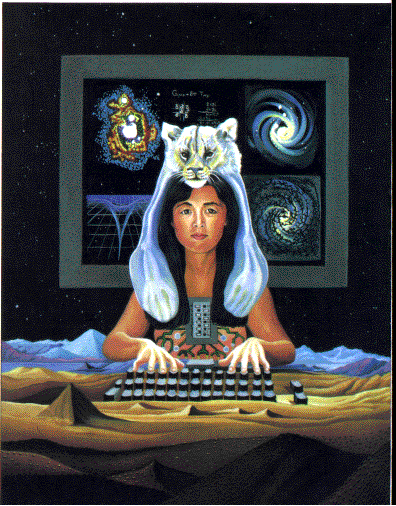
Cover image of Simians, Cyborgs, and Women
This book should be read as a cautionary tale about the evolution of bodies, politics, and stories. Above all, it is a book about the invention and reinvention of nature—perhaps the most central arena of hope, oppression, and contestation for inhabitants of the planet earth in our times. Once upon a time, in the 1970s, […] she belonged to those odd categories [US socialist-feminist, white, female, hominid biologist], invisible to themselves, which are called “unmarked” and which are dependent upon unequal power for their maintenance. But by the last essays, she has turned into a multiply marked cyborg feminist, (x) who tried to keep her politic, as well as her other critical functions, alive in the unpromising times of the last quarter of the twentieth century. […] Then, adopting an illegitimate and frightening sign, the book’s tale turns to the possibilities of a “cyborg” feminism that is perhaps more able to remain attuned to specific historical and political positionings and permanent partialities without abandoning the search for potent connections.
1991, Donna J. Haraway (New York: Routledge, 1991); excerpt p. 1
Editor’s Note: This anthology contains ten essays written between 1978 and 1989, including “A Cyborg Manifesto.” (x) —MS
https://www.routledge.com/Simians-Cyborgs-and-Women-The-Reinvention-of-Nature/Haraway/p/book/9780415903875 https://archive.org/details/simianscyborgswo0000hara
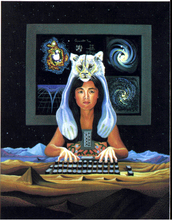
Cover image of Simians, Cyborgs, and Women
(6)
1991–
1997
VNS Matrix
Francesca da Rimini, Josephine Starrs, Julianne Pierce, Virginia Barratt
VNS Matrix (articulated as V.N.S. a fauxcronym) was a cyberfeminist media art collective formed in Adelaide (South Australia) in 1991.
The most consistent VNS Matrix genesis story is that VNS Matrix crawled out of the cyberswamp in the particularly hot summer of 1991 and via an aesthetics of slime initially generated as porn (x) (by women for women) VNS Matrix forged an unholy alliance with technology and its machines, and spewed forth a blasphemous text which was the birth of cyberfeminism. VNS Matrix was on a mission to hijack the toys from technocowboys and remap cyberculture with a feminist bent. This is one story.
There are also stories about a slime consciousness operating via spiralspace, across the gyne-matrix, and that cyberfeminism had multiple simultaneous spontaneous points of origin. Sadie Plant was a node, working from Warwick University, as was Nancy Paterson who in 1992 wrote an article entitled “Cyberfeminism” for the Echo Gopher server.
All of these stories are true and not true. What is clear is that lineage was anathema to VNS Matrix, and that co-relations across spiralspace (x) were spawned, and proliferated.
1991, https://vnsmatrix.net/; excerpt from “The Artists,” VNS Matrix, https://vnsmatrix.net/the-artists
Adelaide, South Australia
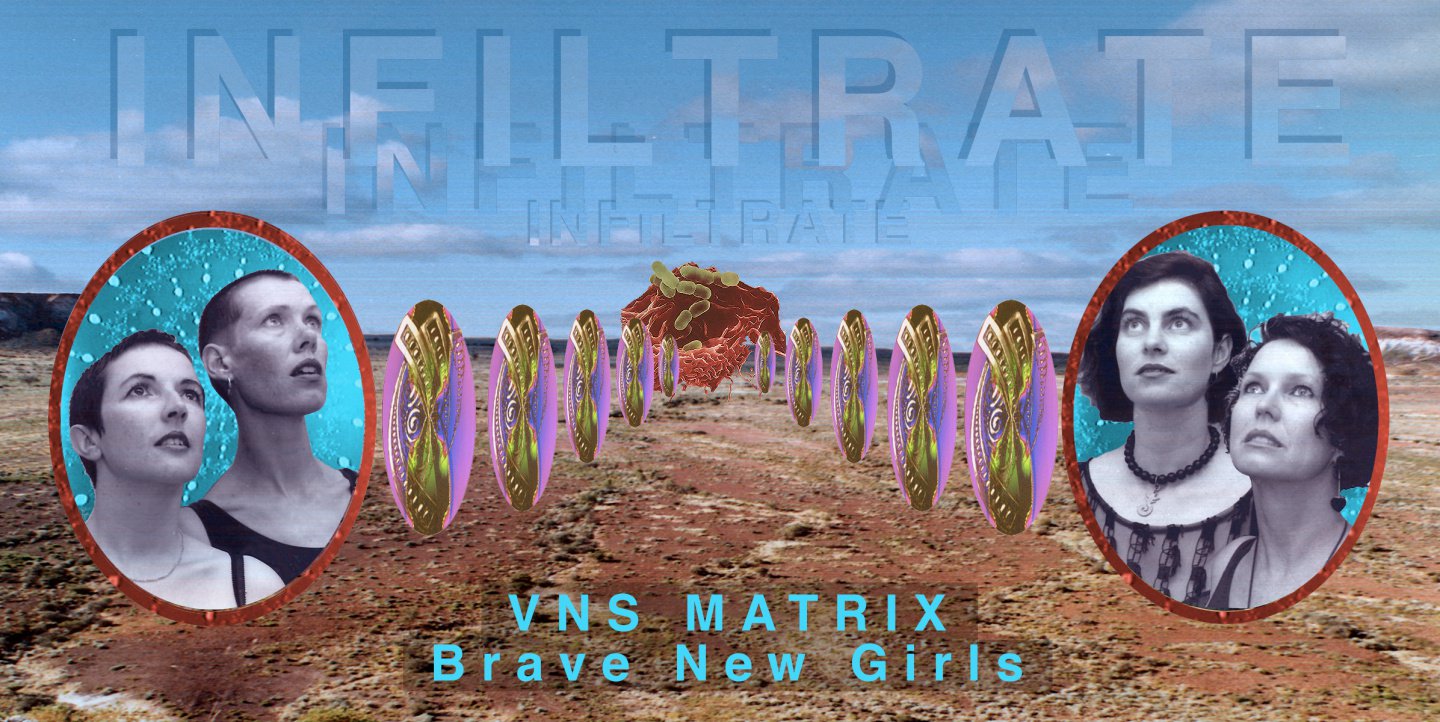
Graphic from VNS Matrix website landing page, https://vnsmatrix.net/
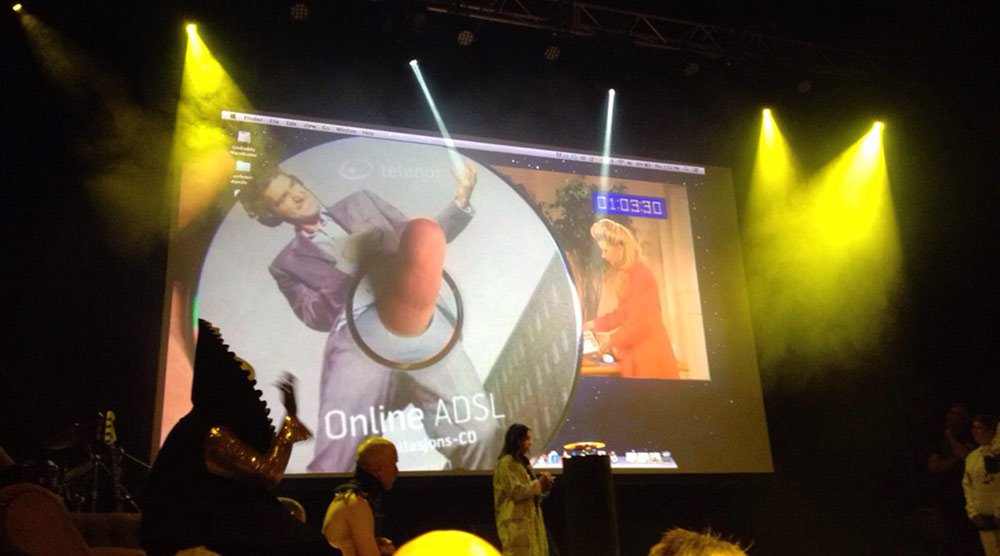
VNS Matrix, Undaddy Mainframe Forever: Now Mona Foma Soda Jerk, 2015
VNS Matrix (articulated as V.N.S. a fauxcronym) was a cyberfeminist media art collective formed in Adelaide (South Australia) in 1991.
The most consistent VNS Matrix genesis story is that VNS Matrix crawled out of the cyberswamp in the particularly hot summer of 1991 and via an aesthetics of slime initially generated as porn (x) (by women for women) VNS Matrix forged an unholy alliance with technology and its machines, and spewed forth a blasphemous text which was the birth of cyberfeminism. VNS Matrix was on a mission to hijack the toys from technocowboys and remap cyberculture with a feminist bent. This is one story.
There are also stories about a slime consciousness operating via spiralspace, across the gyne-matrix, and that cyberfeminism had multiple simultaneous spontaneous points of origin. Sadie Plant was a node, working from Warwick University, as was Nancy Paterson who in 1992 wrote an article entitled “Cyberfeminism” for the Echo Gopher server.
All of these stories are true and not true. What is clear is that lineage was anathema to VNS Matrix, and that co-relations across spiralspace (x) were spawned, and proliferated.
1991, https://vnsmatrix.net/; excerpt from “The Artists,” VNS Matrix, https://vnsmatrix.net/the-artists
Adelaide, South Australia
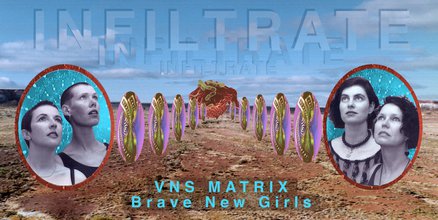
Graphic from VNS Matrix website landing page, https://vnsmatrix.net/
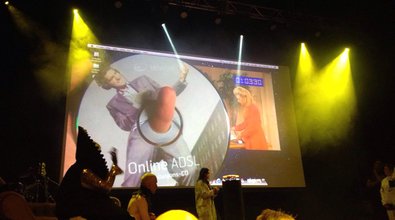
VNS Matrix, Undaddy Mainframe Forever: Now Mona Foma Soda Jerk, 2015
(7)
1991
The Cyberfeminist Manifesto for the 21st Century
VNS Matrix
We are the modern cunt
positive anti reason
unbounded unleashed unforgiving
we see art with our cunt we make art with our cunt
we believe in jouissance madness holiness and poetry
we are the virus (x) of the new world disorder
rupturing the symbolic from within
saboteurs of big daddy mainframe
the clitoris is a direct line to the matrix
the VNS MATRIX
terminators of the moral codes
mercenaries of slime (x)
go down on the altar of abjection
probing the visceral temple we speak in tongues
infiltrating disrupting disseminating
corrupting the discourse
we are the future cunt
1991, VNS Matrix, (x) https://vnsmatrix.net/projects/the-cyberfeminist-manifesto-for-the-21st-century
https://anthology.rhizome.org/a-cyber-feminist-manifesto-for-the-21st-century
Adelaide, South Australia

A Cyberfeminist Manifesto for the 21st Century, image from https://vnsmatrix.net/projects/the-cyberfeminist-manifesto-for-the-21st-century

postcard hanging in a bathroom, image from https://vnsmatrix.net/projects/the-cyberfeminist-manifesto-for-the-21st-century
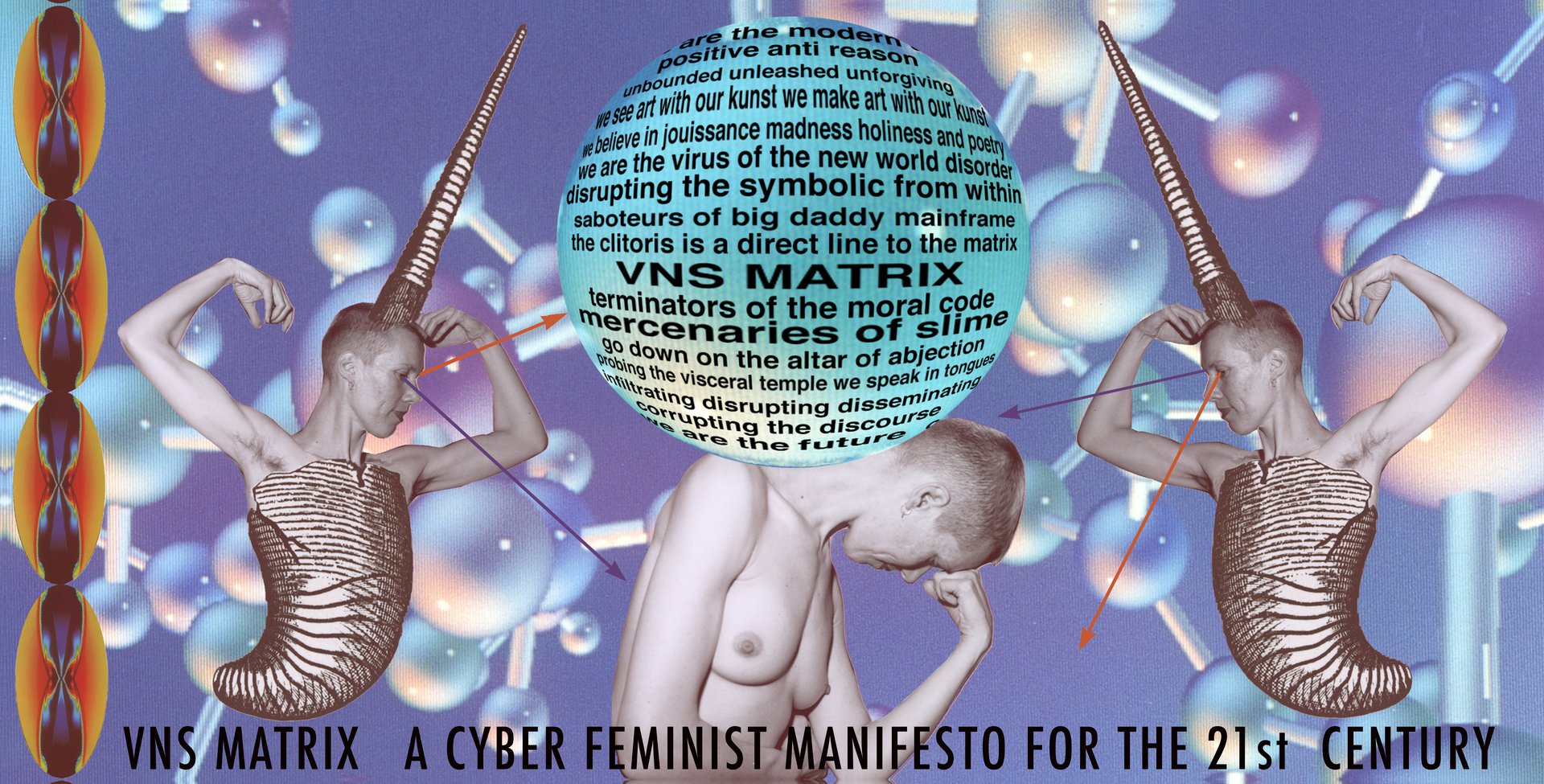
billboard image from https://vnsmatrix.net/projects/billboard-project
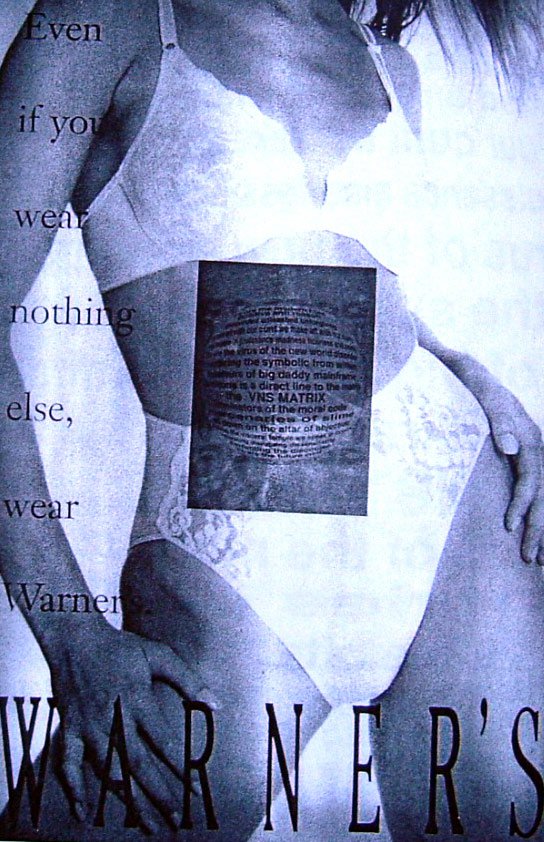
wheatpaste over Warner’s advertisement, image from https://vnsmatrix.net/projects/the-cyberfeminist-manifesto-for-the-21st-century
We are the modern cunt
positive anti reason
unbounded unleashed unforgiving
we see art with our cunt we make art with our cunt
we believe in jouissance madness holiness and poetry
we are the virus (x) of the new world disorder
rupturing the symbolic from within
saboteurs of big daddy mainframe
the clitoris is a direct line to the matrix
the VNS MATRIX
terminators of the moral codes
mercenaries of slime (x)
go down on the altar of abjection
probing the visceral temple we speak in tongues
infiltrating disrupting disseminating
corrupting the discourse
we are the future cunt
1991, VNS Matrix, (x) https://vnsmatrix.net/projects/the-cyberfeminist-manifesto-for-the-21st-century
https://anthology.rhizome.org/a-cyber-feminist-manifesto-for-the-21st-century
Adelaide, South Australia

A Cyberfeminist Manifesto for the 21st Century, image from https://vnsmatrix.net/projects/the-cyberfeminist-manifesto-for-the-21st-century
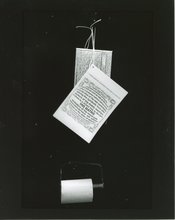
postcard hanging in a bathroom, image from https://vnsmatrix.net/projects/the-cyberfeminist-manifesto-for-the-21st-century
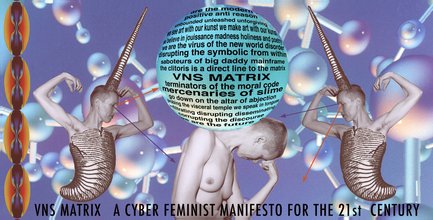
billboard image from https://vnsmatrix.net/projects/billboard-project

wheatpaste over Warner’s advertisement, image from https://vnsmatrix.net/projects/the-cyberfeminist-manifesto-for-the-21st-century
(8)
1991
Automating Gender: Postmodern Feminisms in the Age of the Intelligent Machine
Judith Halberstam
The prospect of thinking machines, or cyborgs, inspired at first religious indignation; intellectual disbelief; and large-scale suspicion of the social, economic, and military implications of an autonomous technology. In general terms, we can identify two major causes for concern produced by cybernetics. The first concern relates to the idea that computers may be taught to simulate human thought, and the second relates to the possibility that automated robots may be wired to replace humans in the workplace. […] Artificial intelligence, (x) of course, threatens to reproduce the thinking subject, while the robot could conceivably be mass produced to form an automated workforce (x) (robot in Czech means “worker”). However, if the former challenges the traditional intellectual prestige of a class of experts, the latter promises to displace the social privilege dependent upon stable categories of gender.
1991, Judith Halberstam, Feminist Studies 17, no. 3 (1991): pp. 439–460; excerpt p. 439
https://www.are.na/block/7530298 http://www.jstor.org/stable/3178281
The prospect of thinking machines, or cyborgs, inspired at first religious indignation; intellectual disbelief; and large-scale suspicion of the social, economic, and military implications of an autonomous technology. In general terms, we can identify two major causes for concern produced by cybernetics. The first concern relates to the idea that computers may be taught to simulate human thought, and the second relates to the possibility that automated robots may be wired to replace humans in the workplace. […] Artificial intelligence, (x) of course, threatens to reproduce the thinking subject, while the robot could conceivably be mass produced to form an automated workforce (x) (robot in Czech means “worker”). However, if the former challenges the traditional intellectual prestige of a class of experts, the latter promises to displace the social privilege dependent upon stable categories of gender.
1991, Judith Halberstam, Feminist Studies 17, no. 3 (1991): pp. 439–460; excerpt p. 439
https://www.are.na/block/7530298 http://www.jstor.org/stable/3178281
(9)
1991
Computers as Theatre
Brenda Laurel
Free speech and censorship have been abiding issues. Whether getting “toaded” on a MUD or mediated into silence on Usenet, people had things they wanted to talk about that didn’t fit into “polite societies.” Pornography (x) was the leading topic (and probably still is), but all sorts of marginalized voices—from Furries to faeries—wanted to participate in these new forms of communication and community where their own voices can be heard. The alt. hierarchy was created by John Gilmore and Brian Reid in 1987 in response to a reorganization of Usenet that would eventuate in greater censorship (x) of topics. “Alt” referred to topics that were “alternative”; that is, not part of mainstream popular culture. Although sexual interests made up a fairly large percentage of alt. topics, many were (and are) also devoted to activism, human rights, and free speech issues.
1991, Brenda Laurel (Menlo Park, CA: Addison-Wesley Publishing Co., 1991); excerpt p. 115
https://www.are.na/block/8216387
Free speech and censorship have been abiding issues. Whether getting “toaded” on a MUD or mediated into silence on Usenet, people had things they wanted to talk about that didn’t fit into “polite societies.” Pornography (x) was the leading topic (and probably still is), but all sorts of marginalized voices—from Furries to faeries—wanted to participate in these new forms of communication and community where their own voices can be heard. The alt. hierarchy was created by John Gilmore and Brian Reid in 1987 in response to a reorganization of Usenet that would eventuate in greater censorship (x) of topics. “Alt” referred to topics that were “alternative”; that is, not part of mainstream popular culture. Although sexual interests made up a fairly large percentage of alt. topics, many were (and are) also devoted to activism, human rights, and free speech issues.
1991, Brenda Laurel (Menlo Park, CA: Addison-Wesley Publishing Co., 1991); excerpt p. 115
https://www.are.na/block/8216387
(10)
1991
Will the Real Body Please Stand Up? Boundary Stories about Virtual Cultures
Allucquère Rosanne Stone
Smoothness implies a seductive tactile quality that expresses one of the characteristics of cyborg envy: In the case of the computer, a desire literally to enter into such a discourse, to penetrate the smooth and relatively affectless surface of the electronic screen and enter the deep, complex, and tactile (individual) cybernetic space or (consensual) cyberspace within and beyond. Penetrating the screen (x) involves a state change from the physical, biological space of the embodied viewer to the symbolic, metaphorical “consensual hallucination” of cyberspace; a space that is a locus of intense desire for refigured embodiment. […]
Programming itself involves constant creation, interpretation, and reinterpretation of languages. […] Penetration translates into envelopment. In other words, to enter cyberspace is to physically put on cyberspace. To become the cyborg, to put on the seductive and dangerous cybernetic space like a garment, is to put on the female. Thus cyberspace both disembodies, in Sobchack’s terms, but also reembodies in the polychrome, hypersurfaced cyborg character of the console cowboy. (x) As the charged, multigendered, hallucinatory space collapses onto the personal physicality of the console cowboy, the intense tactility associated with such a reconceived and refigured body constitutes the seductive quality of what one might call the cybernetic act.
1991, Allucquère Rosanne Stone, in Cyberspace: First Steps, ed. Michael Benedikt (Cambridge, MA: MIT Press, 1991), pp. 81–118; excerpt pp.117–118
https://www.are.na/block/7557425
Smoothness implies a seductive tactile quality that expresses one of the characteristics of cyborg envy: In the case of the computer, a desire literally to enter into such a discourse, to penetrate the smooth and relatively affectless surface of the electronic screen and enter the deep, complex, and tactile (individual) cybernetic space or (consensual) cyberspace within and beyond. Penetrating the screen (x) involves a state change from the physical, biological space of the embodied viewer to the symbolic, metaphorical “consensual hallucination” of cyberspace; a space that is a locus of intense desire for refigured embodiment. […]
Programming itself involves constant creation, interpretation, and reinterpretation of languages. […] Penetration translates into envelopment. In other words, to enter cyberspace is to physically put on cyberspace. To become the cyborg, to put on the seductive and dangerous cybernetic space like a garment, is to put on the female. Thus cyberspace both disembodies, in Sobchack’s terms, but also reembodies in the polychrome, hypersurfaced cyborg character of the console cowboy. (x) As the charged, multigendered, hallucinatory space collapses onto the personal physicality of the console cowboy, the intense tactility associated with such a reconceived and refigured body constitutes the seductive quality of what one might call the cybernetic act.
1991, Allucquère Rosanne Stone, in Cyberspace: First Steps, ed. Michael Benedikt (Cambridge, MA: MIT Press, 1991), pp. 81–118; excerpt pp.117–118
https://www.are.na/block/7557425
(11)
1991–
2002
Cyberpoetry: Pelo
Ainize Txopitea
LOS RECUERDOS DE MI NIÑEZ. TITERES QUE DORMITAN EN ATAUDES MOJADOS POR LA CANDIDA LLUVIA DE LA INOCENCIA. ZAPATOS EMBARRADOS QUE PISAN UN DESTINO INQUESTIONABLE, TAN EVIDENTE COMO LEJANO. ARREBATOS DE GARGANTAS PROFUNDAS. COLUMPIOS QUE ENTRETIENEN AL TIEMPO Y A LA LUNA Y A LAS ESTACIONES DE POLEN. SIEMPRE MEANDO DE PIE Y EL RELOJ SIEMPRE MARCA TERNURA. LA TURBIA LUZ DE ESE FLEXO QUE ILUMINA EL ESTAMPADO DE LA PARED, DEL SOTANO DEL PARAISO. NO ES MIEDO ES ANSIA POR CONTINUAR EL COMIENZO DEL FIN. EL MUÑECO ESTA CALVO, SU PELO NARANJA ME PERTENECE, AL IGUAL QUE LAS BARRIGUITAS; MANCAS, COJAS, DESNUDAS, DEGOLLADAS. FANTASIA. MUJERES EMBARAZADAS Y CABAÑAS DE INDIOS. LOS RECUERDOS DE MI NIÑEZ.
THE MEMORIES OF MY CHILDHOOD. PUPPETS THAT SLEEP IN CASKS WET BY THE CANDID RAIN OF INNOCENCE. (x) CLOSED SHOES THAT STEP ON AN UNQUESTIONABLE DESTINATION, AS EVIDENT AS FAR. DEEP THROAT SNATCHES. SWINGS THAT ENTERTAIN TIME AND THE MOON AND POLLEN STATIONS. ALWAYS PISSING ON THE FOOT AND THE CLOCK ALWAYS MARKS TENDENCY THE MUDDY LIGHT OF THAT FLEXUS THAT ILLUMINATES THE PRINT ON THE WALL, THE BASEMENT OF PARADISE. IT IS NOT FEAR IT IS ANXIETY TO CONTINUE THE BEGINNING OF THE END. THE DOLL (x) IS BALD, HIS ORANGE HAIR BELONGS TO ME, LIKE THE BELLIES; SPOTS, LAUNCHES, NAKED, SLIMMED. FANTASY. PREGNANT WOMEN AND COTTAGES OF INDIANS. MEMORIES OF MY CHILDHOOD.
1991, Ainize Txopitea, https://web.archive.org/web/20020713144131/http://www.cyberpoetry.net/index.html
https://web.archive.org/web/20020702175032/http://www.cyberpoetry.net/pelo.html
LOS RECUERDOS DE MI NIÑEZ. TITERES QUE DORMITAN EN ATAUDES MOJADOS POR LA CANDIDA LLUVIA DE LA INOCENCIA. ZAPATOS EMBARRADOS QUE PISAN UN DESTINO INQUESTIONABLE, TAN EVIDENTE COMO LEJANO. ARREBATOS DE GARGANTAS PROFUNDAS. COLUMPIOS QUE ENTRETIENEN AL TIEMPO Y A LA LUNA Y A LAS ESTACIONES DE POLEN. SIEMPRE MEANDO DE PIE Y EL RELOJ SIEMPRE MARCA TERNURA. LA TURBIA LUZ DE ESE FLEXO QUE ILUMINA EL ESTAMPADO DE LA PARED, DEL SOTANO DEL PARAISO. NO ES MIEDO ES ANSIA POR CONTINUAR EL COMIENZO DEL FIN. EL MUÑECO ESTA CALVO, SU PELO NARANJA ME PERTENECE, AL IGUAL QUE LAS BARRIGUITAS; MANCAS, COJAS, DESNUDAS, DEGOLLADAS. FANTASIA. MUJERES EMBARAZADAS Y CABAÑAS DE INDIOS. LOS RECUERDOS DE MI NIÑEZ.
THE MEMORIES OF MY CHILDHOOD. PUPPETS THAT SLEEP IN CASKS WET BY THE CANDID RAIN OF INNOCENCE. (x) CLOSED SHOES THAT STEP ON AN UNQUESTIONABLE DESTINATION, AS EVIDENT AS FAR. DEEP THROAT SNATCHES. SWINGS THAT ENTERTAIN TIME AND THE MOON AND POLLEN STATIONS. ALWAYS PISSING ON THE FOOT AND THE CLOCK ALWAYS MARKS TENDENCY THE MUDDY LIGHT OF THAT FLEXUS THAT ILLUMINATES THE PRINT ON THE WALL, THE BASEMENT OF PARADISE. IT IS NOT FEAR IT IS ANXIETY TO CONTINUE THE BEGINNING OF THE END. THE DOLL (x) IS BALD, HIS ORANGE HAIR BELONGS TO ME, LIKE THE BELLIES; SPOTS, LAUNCHES, NAKED, SLIMMED. FANTASY. PREGNANT WOMEN AND COTTAGES OF INDIANS. MEMORIES OF MY CHILDHOOD.
1991, Ainize Txopitea, https://web.archive.org/web/20020713144131/http://www.cyberpoetry.net/index.html
https://web.archive.org/web/20020702175032/http://www.cyberpoetry.net/pelo.html
(12)
1992
All New Gen
VNS Matrix
In this game you become a component of the matrix, joining ANG in her quest to sabotage the databanks of Big Daddy Mainframe … All battles take place in the Contested Zone, a terrain of propaganda, subversion and transgression. Your guides through the Contested Zone are renegade DNA Sluts, abdicators from the oppressive superhero regime, (x) who have joined ANG in her fight for data liberation … The path of infiltration is treacherous and you will encounter many obstacles. The most wicked is Circuit Boy—a dangerous techno-bimbo … You will be fuelled by G-Slime. (x) Please monitor your levels. Bonding with the DNA Sluts will replenish your supplies … Be prepared to question your gendered construction … Be aware there is no moral code in the Zone.
1992, VNS Matrix, (x) https://vnsmatrix.net/projects/all-new-gen
Adelaide, South Australia
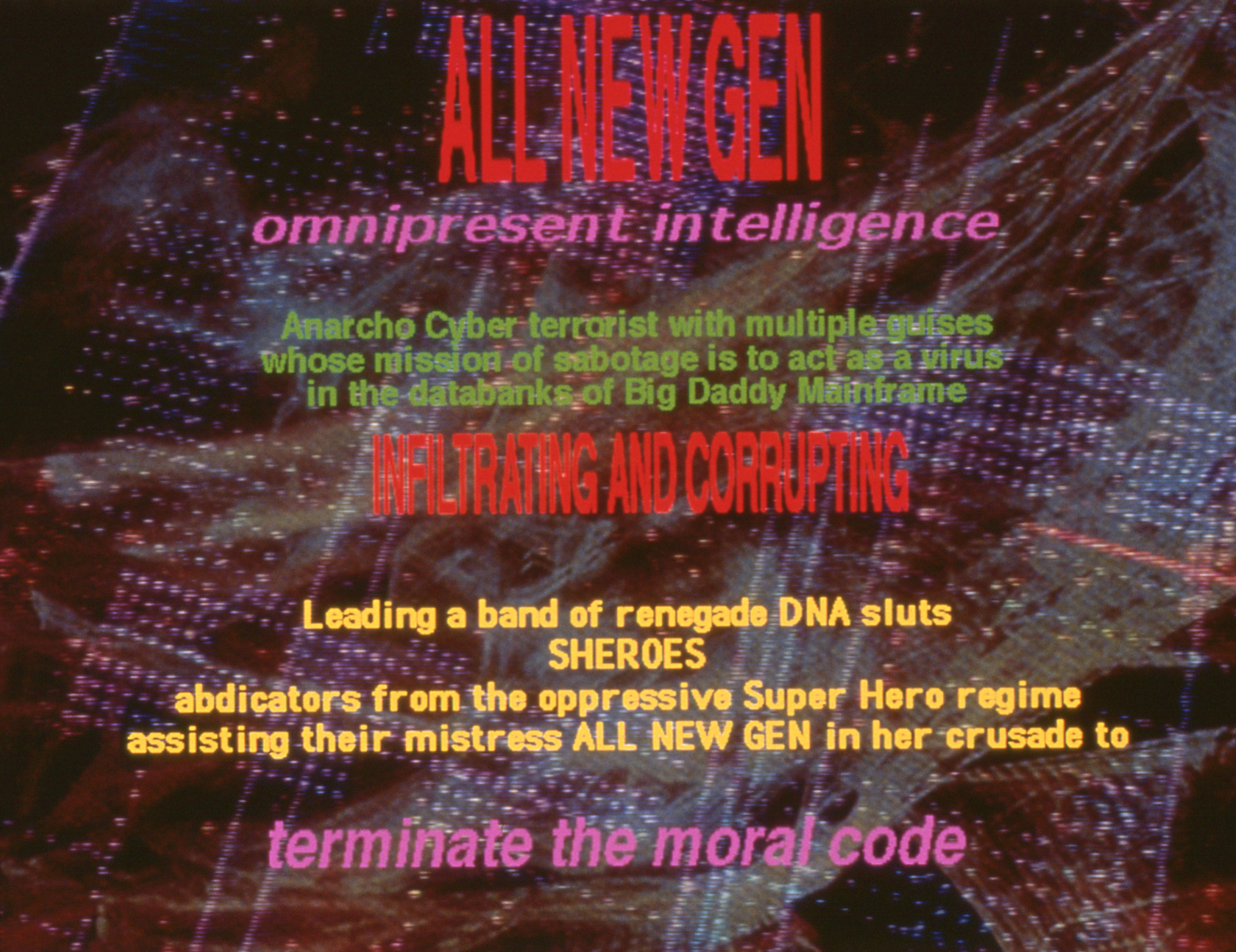
Intro Slide, image from https://vnsmatrix.net/projects/all-new-gen

DNA Sluts, image from https://vnsmatrix.net/projects/all-new-gen
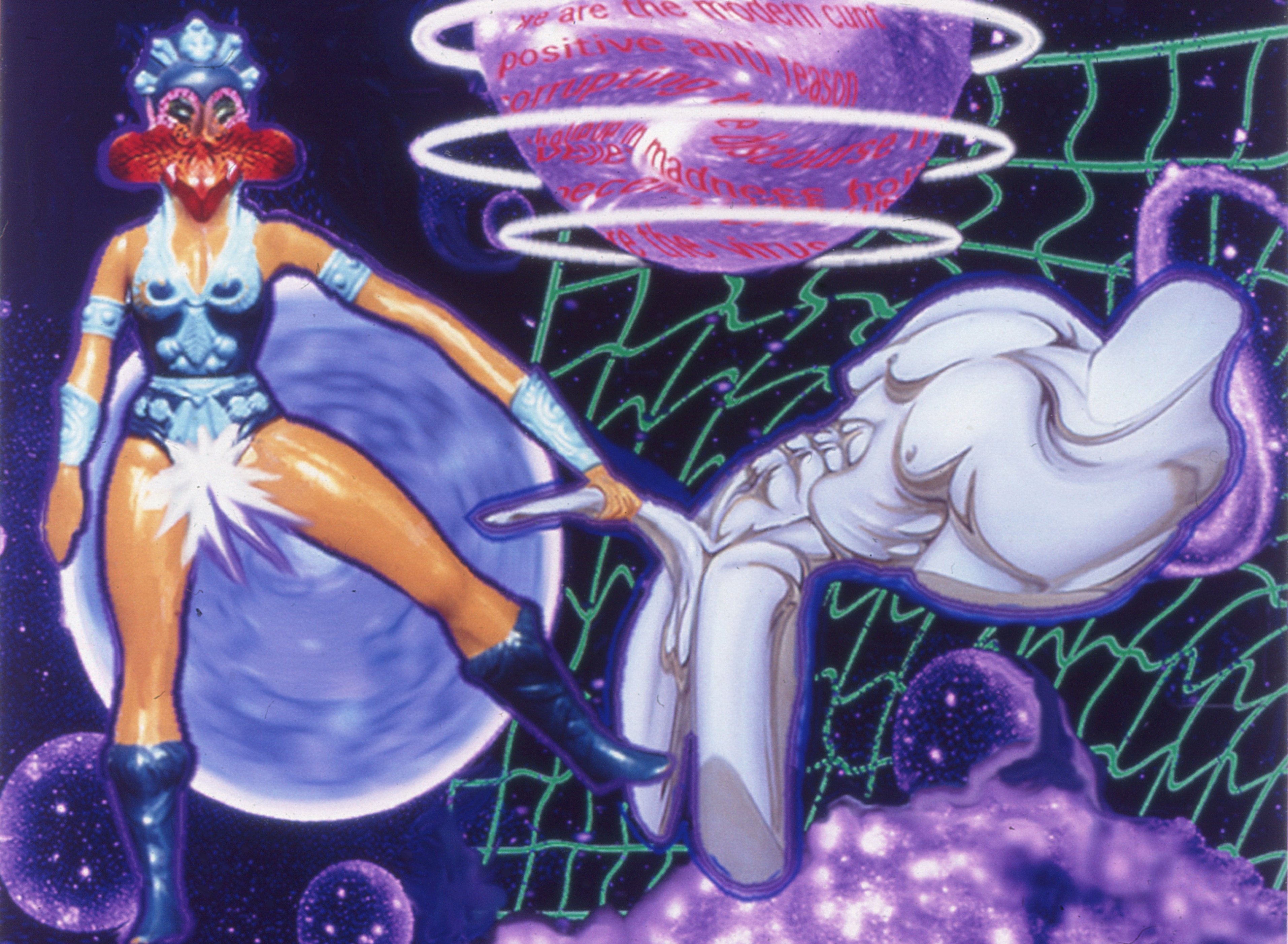
DNA Sluts battle Circuit Boy, image from https://vnsmatrix.net/projects/all-new-gen
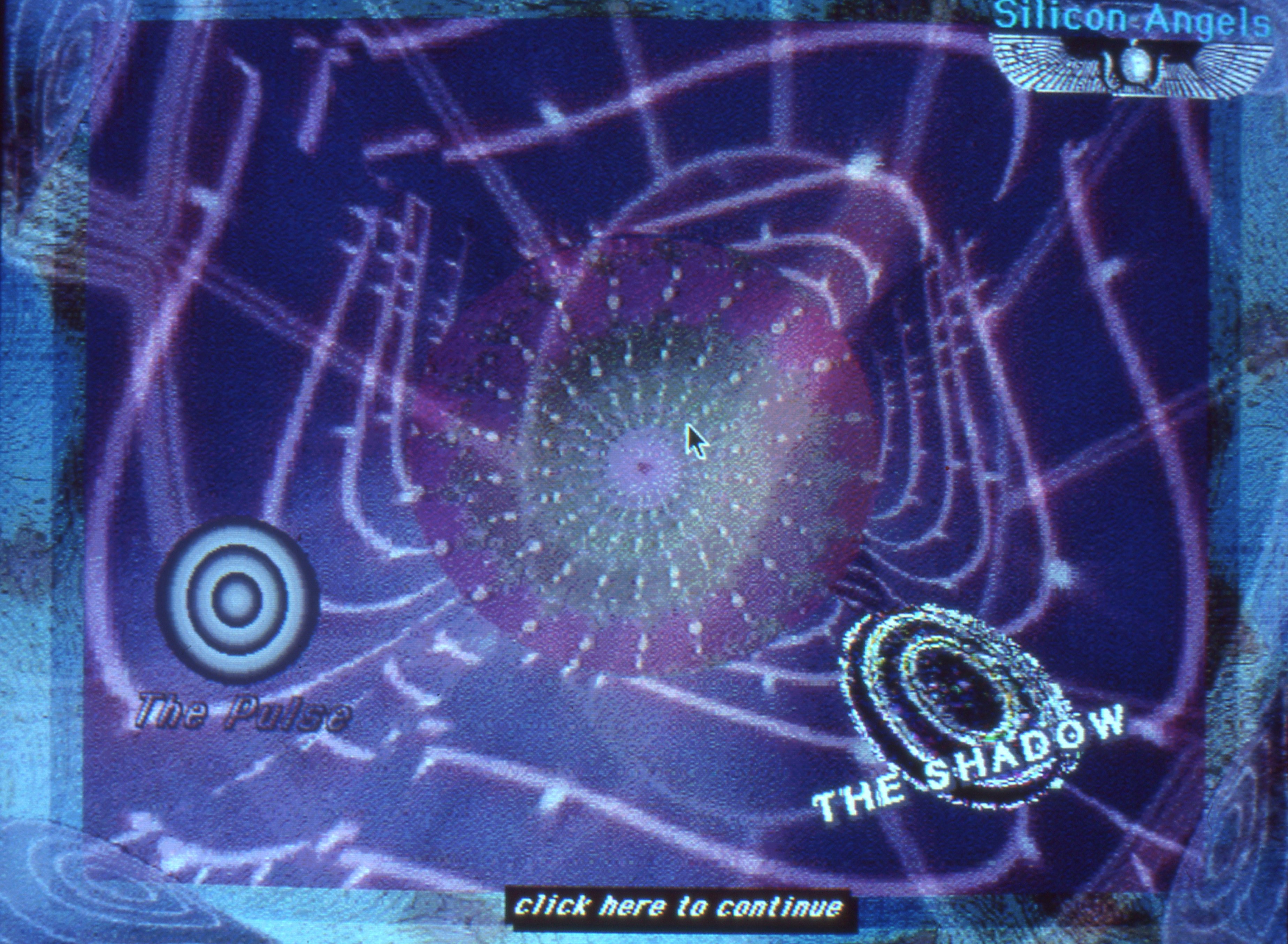
Silicon Angels, The Pulse, The Shadow, image from https://vnsmatrix.net/projects/all-new-gen
In this game you become a component of the matrix, joining ANG in her quest to sabotage the databanks of Big Daddy Mainframe … All battles take place in the Contested Zone, a terrain of propaganda, subversion and transgression. Your guides through the Contested Zone are renegade DNA Sluts, abdicators from the oppressive superhero regime, (x) who have joined ANG in her fight for data liberation … The path of infiltration is treacherous and you will encounter many obstacles. The most wicked is Circuit Boy—a dangerous techno-bimbo … You will be fuelled by G-Slime. (x) Please monitor your levels. Bonding with the DNA Sluts will replenish your supplies … Be prepared to question your gendered construction … Be aware there is no moral code in the Zone.
1992, VNS Matrix, (x) https://vnsmatrix.net/projects/all-new-gen
Adelaide, South Australia
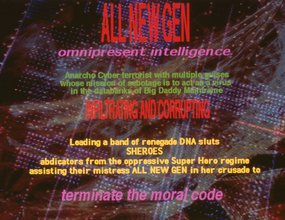
Intro Slide, image from https://vnsmatrix.net/projects/all-new-gen
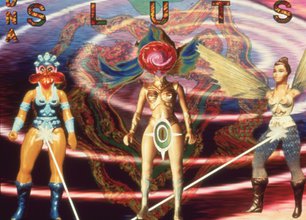
DNA Sluts, image from https://vnsmatrix.net/projects/all-new-gen
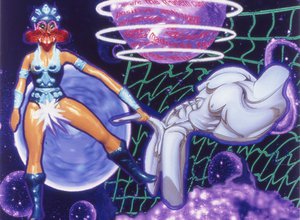
DNA Sluts battle Circuit Boy, image from https://vnsmatrix.net/projects/all-new-gen

Silicon Angels, The Pulse, The Shadow, image from https://vnsmatrix.net/projects/all-new-gen
(13)
1992
Women in Technology
Founded in 1992, Women In Technology (WIT) empowers girls and women at every stage of their STEAM careers—from the classroom to the boardroom. WIT utilizes its programs, connections, volunteer opportunities and events to enable the development of the WIT community through recognition, thought leadership and foundation efforts. WIT is driven to help women and girls write their own stories of success throughout the full lifecycle of their careers and continued evolution as STEAM leaders in Georgia.
1992, Women in Technology, https://www.mywit.org/about-wit/
Georgia, USA
Founded in 1992, Women In Technology (WIT) empowers girls and women at every stage of their STEAM careers—from the classroom to the boardroom. WIT utilizes its programs, connections, volunteer opportunities and events to enable the development of the WIT community through recognition, thought leadership and foundation efforts. WIT is driven to help women and girls write their own stories of success throughout the full lifecycle of their careers and continued evolution as STEAM leaders in Georgia.
1992, Women in Technology, https://www.mywit.org/about-wit/
Georgia, USA
(14)
1992
Inherent Rights, Vision Rights
Lawrence Paul Yuxweluptun
In the virtual-reality “Inherent Rights, Vision Rights” the participant explores a sacred ceremony in a traditional West Coast Native Canadian long house. The long house is occupied by music, fire and spirits, which the participant can interact with. Totem (x) poles and native landscape surround the house, producing a space for meditation with virtual nature and culture. In Yuxweluptun’s virtual environment project there is no helmet, no way to seemingly escape the space you occupy. Instead a kiosk with a viewer, like an old-fashioned stereoscope, allows entry into the work. Once inside, the viewer experiences time. The time of walking from the outside to the inside. The time of listening to a dog. The time of hearing the roar of the fire as the wood burns. Time passes. And there is space. There is a door to enter, to define the outside of the longhouse from the inside. There are four walls and a roof. The smoke rises upward to exit out of the smokehole.
1992, Lawrence Paul Yuxweluptun; excerpt from “Inherent Rights, Vision Rights,” Archive of Digital Art, https://www.digitalartarchive.at/database/general/work/inherent-rights-vision-rights.html
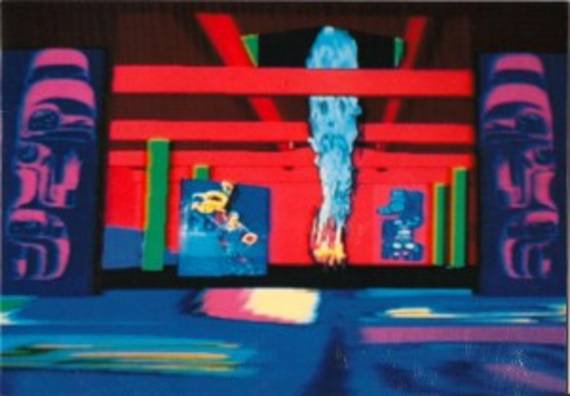
© 1992 Lawrence Paul Yuxweluptun, image from https://www.digitalartarchive.at/database/general/work/inherent-rights-vision-rights.html

© 1992 Lawrence Paul Yuxweluptun, image from https://www.digitalartarchive.at/database/general/work/inherent-rights-vision-rights.html

© 1992 Lawrence Paul Yuxweluptun, image from https://www.digitalartarchive.at/database/general/work/inherent-rights-vision-rights.html
In the virtual-reality “Inherent Rights, Vision Rights” the participant explores a sacred ceremony in a traditional West Coast Native Canadian long house. The long house is occupied by music, fire and spirits, which the participant can interact with. Totem (x) poles and native landscape surround the house, producing a space for meditation with virtual nature and culture. In Yuxweluptun’s virtual environment project there is no helmet, no way to seemingly escape the space you occupy. Instead a kiosk with a viewer, like an old-fashioned stereoscope, allows entry into the work. Once inside, the viewer experiences time. The time of walking from the outside to the inside. The time of listening to a dog. The time of hearing the roar of the fire as the wood burns. Time passes. And there is space. There is a door to enter, to define the outside of the longhouse from the inside. There are four walls and a roof. The smoke rises upward to exit out of the smokehole.
1992, Lawrence Paul Yuxweluptun; excerpt from “Inherent Rights, Vision Rights,” Archive of Digital Art, https://www.digitalartarchive.at/database/general/work/inherent-rights-vision-rights.html
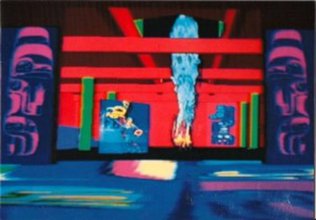
© 1992 Lawrence Paul Yuxweluptun, image from https://www.digitalartarchive.at/database/general/work/inherent-rights-vision-rights.html

© 1992 Lawrence Paul Yuxweluptun, image from https://www.digitalartarchive.at/database/general/work/inherent-rights-vision-rights.html
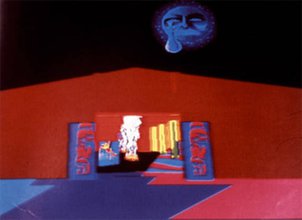
© 1992 Lawrence Paul Yuxweluptun, image from https://www.digitalartarchive.at/database/general/work/inherent-rights-vision-rights.html
(15)
1992
Correspondence
Sue Thomas
While Sue Thomas’s Correspondence also concerns computers, they are just a means to a metaphor, and the tech speak is limited to a single line of Basic. Correspondence is a short but complex and confident first novel, warmly human, proudly flaunting its influences, briskly unsentimental and cheerfully subversive—even if for the most part it only subverts itself. It is woven from four elements. The first […] is the story of a computer programmer […] who is turning herself into an android. (x) Then there is a series of unashamed infodumps (Thomas’s own term) which mix digressive commentaries or quotations into the text, and the chipper exhortations of a guide to a computer-generated role-playing game. And finally there is the story of the deepening friendship of Shirley and Rosa, which it slowly becomes clear is the role-playing game, a system of emotion therapy (x) written by the would-be android that slowly but surely takes over the book. The human ghost escapes into the machine, changing it just as machines would change us. Recommended.
1992, Sue Thomas (London: The Women’s Press, 1992); excerpt from “Book Reviews,” Interzone 59, May 1992; submitted by Sue Thomas
https://suethomasnet.wordpress.com/publications/correspondence-3/
While Sue Thomas’s Correspondence also concerns computers, they are just a means to a metaphor, and the tech speak is limited to a single line of Basic. Correspondence is a short but complex and confident first novel, warmly human, proudly flaunting its influences, briskly unsentimental and cheerfully subversive—even if for the most part it only subverts itself. It is woven from four elements. The first […] is the story of a computer programmer […] who is turning herself into an android. (x) Then there is a series of unashamed infodumps (Thomas’s own term) which mix digressive commentaries or quotations into the text, and the chipper exhortations of a guide to a computer-generated role-playing game. And finally there is the story of the deepening friendship of Shirley and Rosa, which it slowly becomes clear is the role-playing game, a system of emotion therapy (x) written by the would-be android that slowly but surely takes over the book. The human ghost escapes into the machine, changing it just as machines would change us. Recommended.
1992, Sue Thomas (London: The Women’s Press, 1992); excerpt from “Book Reviews,” Interzone 59, May 1992; submitted by Sue Thomas
https://suethomasnet.wordpress.com/publications/correspondence-3/
(16)
1993
Geekgirl
Rosie Cross
geekgirl // (say ‘geekgerl) noun Colloquial a female computer geek, especially on the internet [coined by Rosie Cross, born 1958, British internet publisher in Australia, as the title of her online magazine] 1993. […] Geekgirl (x) Zine is an online Australian magazine about women and technology. […] Australia’s longest and continuously running online publication! (x) […] Proud to boot, and a digital repository for interesting bits of infotainment Slogans “put down that pony and pick up a computer!” & “Grrls Need Modems.”
1993–present, Rosie Cross (RosieX), https://geekgirl.com.au/blog/bio/
Australia
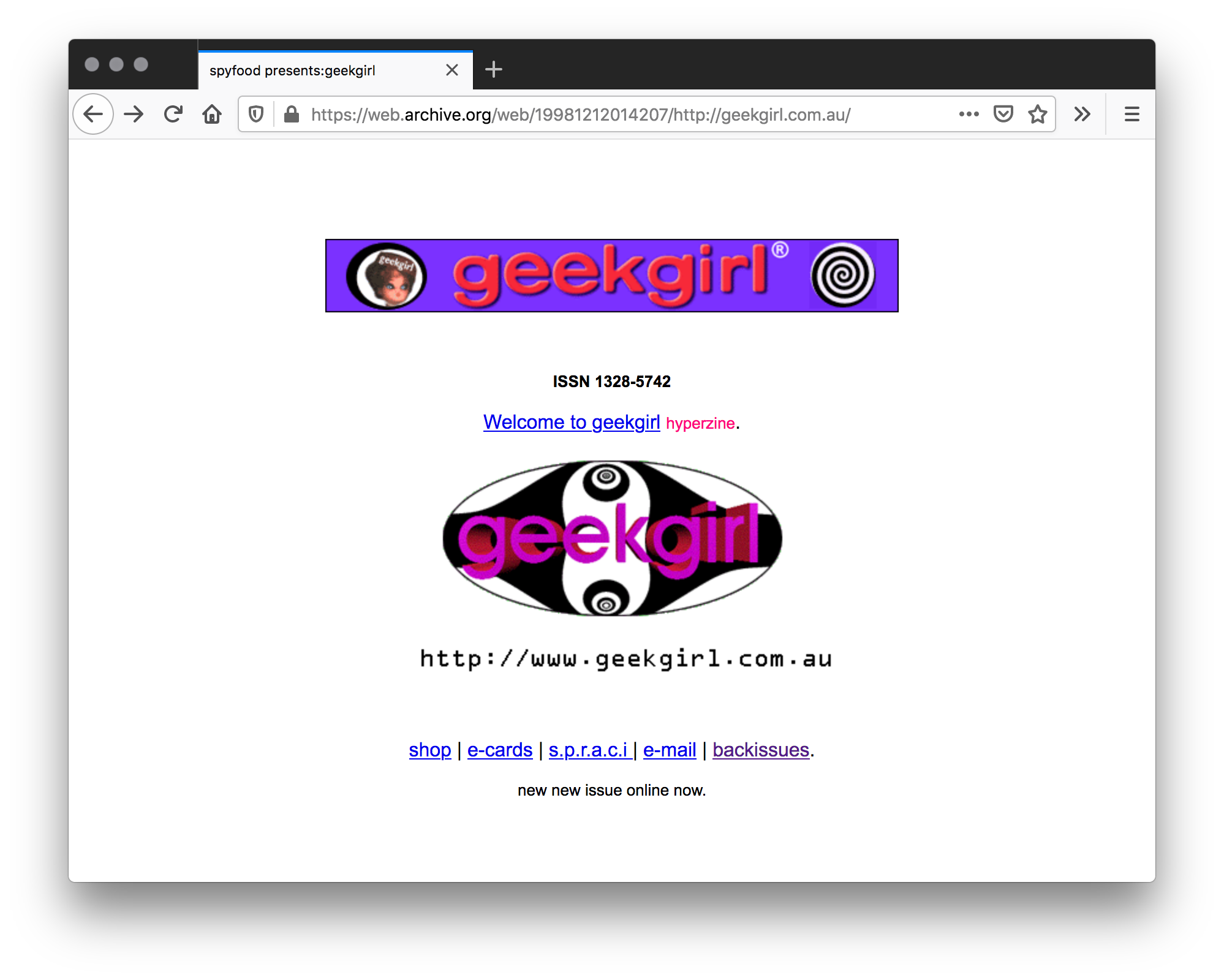
Wayback Machine, July 1, 1997; Screenshot, 2020, Firefox v76.0.1 on Mac OS 10.13.3; https://web.archive.org/web/19980701090817/http://www.youth.nsw.gov.au/rob.upload/friendly/index.html

Logo from Wayback Machine, July 1, 1997; Screenshot, 2020, Firefox v76.0.1 on Mac OS 10.13.3; https://web.archive.org/web/19980701090817/http://www.youth.nsw.gov.au/rob.upload/friendly/index.html

Banner graphic from Wayback Machine, July 1, 1997; Screenshot, 2020, Firefox v76.0.1 on Mac OS 10.13.3; https://web.archive.org/web/19980701090817/http://www.youth.nsw.gov.au/rob.upload/friendly/index.html
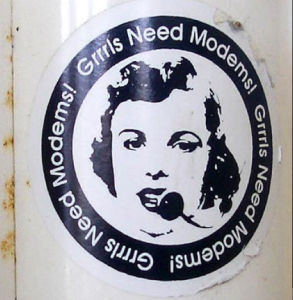
‘still in circulation’ sticker by Rosie Cross, aka RosieX | geekgirl, image from https://networkcultures.org/performanceofcode/2015/01/27/commoning-the-network-feminist-methodologies/
geekgirl // (say ‘geekgerl) noun Colloquial a female computer geek, especially on the internet [coined by Rosie Cross, born 1958, British internet publisher in Australia, as the title of her online magazine] 1993. […] Geekgirl (x) Zine is an online Australian magazine about women and technology. […] Australia’s longest and continuously running online publication! (x) […] Proud to boot, and a digital repository for interesting bits of infotainment Slogans “put down that pony and pick up a computer!” & “Grrls Need Modems.”
1993–present, Rosie Cross (RosieX), https://geekgirl.com.au/blog/bio/
Australia
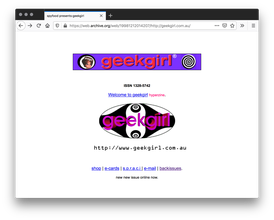
Wayback Machine, July 1, 1997; Screenshot, 2020, Firefox v76.0.1 on Mac OS 10.13.3; https://web.archive.org/web/19980701090817/http://www.youth.nsw.gov.au/rob.upload/friendly/index.html

Logo from Wayback Machine, July 1, 1997; Screenshot, 2020, Firefox v76.0.1 on Mac OS 10.13.3; https://web.archive.org/web/19980701090817/http://www.youth.nsw.gov.au/rob.upload/friendly/index.html

Banner graphic from Wayback Machine, July 1, 1997; Screenshot, 2020, Firefox v76.0.1 on Mac OS 10.13.3; https://web.archive.org/web/19980701090817/http://www.youth.nsw.gov.au/rob.upload/friendly/index.html
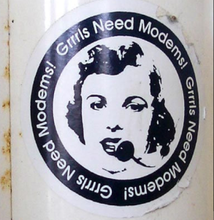
‘still in circulation’ sticker by Rosie Cross, aka RosieX | geekgirl, image from https://networkcultures.org/performanceofcode/2015/01/27/commoning-the-network-feminist-methodologies/
(17)
1993
Women’s WIRE (Women’s Information Resource Exchange)
Nancy Rhine, Ellen Pack
Their network, the Women's Information Resource Exchange, WIRE—renamed Women’s WIRE after a legal dustup with Wired Magazine—launched to a founding group of five hundred members in October 1993, becoming the first commercial online service explicitly targeted to women.
1993, Nancy Rhine, Ellen Pack, description by Claire L. Evans, excerpt from Broad Band (x)
Their network, the Women's Information Resource Exchange, WIRE—renamed Women’s WIRE after a legal dustup with Wired Magazine—launched to a founding group of five hundred members in October 1993, becoming the first commercial online service explicitly targeted to women.
1993, Nancy Rhine, Ellen Pack, description by Claire L. Evans, excerpt from Broad Band (x)
(18)
1993–
2018
Colnodo: Uso estratégico de Internet para el desarrollo [Colnodo: Strategic Use of the Internet for Development]
Julián Casasbuenas G., Ariel Barbosa, Olga P. Paz Martínez
Facilitamos el intercambio de información en pro del desarrollo y mejoramiento de la calidad de vida de los colombianos y colombianas para transformar la cultura del manejo de la información, la comunicación con el mundo y generar nuevas herramientas y espacios para todas las personas. Colnodo orienta su labor a partir de sus programas estratégicos y ejes transversales priorizando temas como los derechos humanos, el mejoramiento de la condición de las mujeres, la gobernabilidad, democracia y participación ciudadana, el desarrollo sostenible, la democratización del conocimiento, la inclusión digital, entre otros aspectos dentro del uso estratégico de tecnologías de información y comunicación (TIC) (x) para el desarrollo.
We facilitate the exchange of information in favor of the development and improvement of the quality of life of Colombians (x) to transform the culture of information management, communicate with the world, and generate new tools and spaces for all people. Colnodo guides its work based on its strategic programs and transversal axes prioritizing issues such as human rights, the improvement of the status of women, governance, democracy and citizen participation, sustainable development, the democratization of knowledge, digital inclusion, among other aspects within the strategic use of information and communication technologies (ICT) for development.
1993, Julián Casasbuenas G., Ariel Barbosa, and Olga P. Paz Martínez, https://www.colnodo.apc.org/es/inicio
Colombia
Facilitamos el intercambio de información en pro del desarrollo y mejoramiento de la calidad de vida de los colombianos y colombianas para transformar la cultura del manejo de la información, la comunicación con el mundo y generar nuevas herramientas y espacios para todas las personas. Colnodo orienta su labor a partir de sus programas estratégicos y ejes transversales priorizando temas como los derechos humanos, el mejoramiento de la condición de las mujeres, la gobernabilidad, democracia y participación ciudadana, el desarrollo sostenible, la democratización del conocimiento, la inclusión digital, entre otros aspectos dentro del uso estratégico de tecnologías de información y comunicación (TIC) (x) para el desarrollo.
We facilitate the exchange of information in favor of the development and improvement of the quality of life of Colombians (x) to transform the culture of information management, communicate with the world, and generate new tools and spaces for all people. Colnodo guides its work based on its strategic programs and transversal axes prioritizing issues such as human rights, the improvement of the status of women, governance, democracy and citizen participation, sustainable development, the democratization of knowledge, digital inclusion, among other aspects within the strategic use of information and communication technologies (ICT) for development.
1993, Julián Casasbuenas G., Ariel Barbosa, and Olga P. Paz Martínez, https://www.colnodo.apc.org/es/inicio
Colombia
(19)
1993
Black to the Future
Mark Dery
“Speculative fiction that treats African-American themes and addresses African-American concerns in the context of twentieth-century technoculture—and, more generally, African-American signification that appropriates images of technology and a prosthetically enhanced future—might, for want of a better term, be called ‘Afrofuturism.’ The notion of Afrofuturism gives rise to a troubling antinomy: Can a community whose past has been deliberately rubbed out, and whose energies have subsequently been consumed by the search for legible traces of its history, imagine possible futures? Furthermore, isn’t the unreal estate of the future already owned by the technocrats, futurologists, streamliners, and set designers white to a man who have engineered our collective fantasies?” —Mark Dery, excerpt
https://archive.org/stream/BlackToTheFuture/Black_to_the_Future_Interviews_with_Sam_djvu.txt
“Speculative fiction that treats African-American themes and addresses African-American concerns in the context of twentieth-century technoculture—and, more generally, African-American signification that appropriates images of technology and a prosthetically enhanced future—might, for want of a better term, be called ‘Afrofuturism.’ The notion of Afrofuturism gives rise to a troubling antinomy: Can a community whose past has been deliberately rubbed out, and whose energies have subsequently been consumed by the search for legible traces of its history, imagine possible futures? Furthermore, isn’t the unreal estate of the future already owned by the technocrats, futurologists, streamliners, and set designers white to a man who have engineered our collective fantasies?” —Mark Dery, excerpt
https://archive.org/stream/BlackToTheFuture/Black_to_the_Future_Interviews_with_Sam_djvu.txt
(20)
1993–
2001
GashGirl
Francesca da Rimini
da Rimini’s web work echoes Montaigne (1533–1592) who said, “the journey is everything.” We are given a view of the world as if traveling with a gypsy/flaneur who collects objects along some long dark road—photographs, video and audio clips, artifacts. The ride is a descent into territories long considered taboo. One reviewer has likened da Rimini’s work to “confrontational rants,” (x) but there are also manifestations of a deep romanticism—“come dress yourself in love, let the journey begin,” she cajoles, “search for beauty without features, something deeper than any signs.” And once lulled, almost unsuspecting, you arrive at an image of naked figures kneeling before ominous black-suited men—full-screen, apocalyptic. da Rimini is uncompromising and condemns without distinction—“all history is pornography,” “wars are made by men who fuck their daughters.”
1993, Francesca da Rimini, https://web.archive.org/web/20031203224248/https://www.sysx.org/gashgirl/; excerpt from Randy Adams, “Francesca da Rimini,” trAce Online Writing Centre, August 22, 2002, https://web.archive.org/web/20031202225121/http://trace.ntu.ac.uk/showcase/index.cfm?article=13
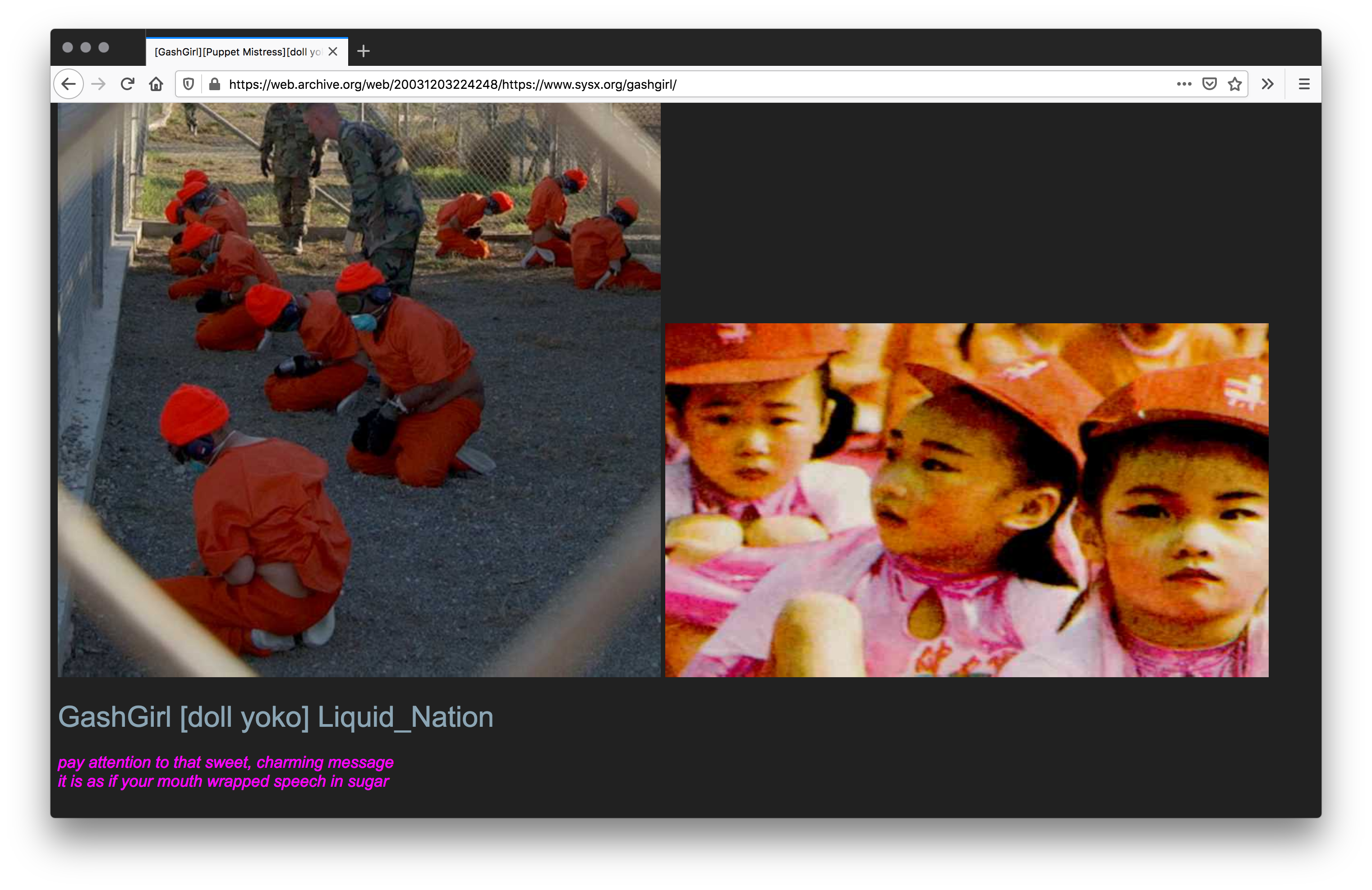
Wayback Machine, December 3, 2003; Screenshot, 2020, Firefox v76.0.1 on Mac OS 10.13.3; https://web.archive.org/web/20031203224248/https://www.sysx.org/gashgirl/
da Rimini’s web work echoes Montaigne (1533–1592) who said, “the journey is everything.” We are given a view of the world as if traveling with a gypsy/flaneur who collects objects along some long dark road—photographs, video and audio clips, artifacts. The ride is a descent into territories long considered taboo. One reviewer has likened da Rimini’s work to “confrontational rants,” (x) but there are also manifestations of a deep romanticism—“come dress yourself in love, let the journey begin,” she cajoles, “search for beauty without features, something deeper than any signs.” And once lulled, almost unsuspecting, you arrive at an image of naked figures kneeling before ominous black-suited men—full-screen, apocalyptic. da Rimini is uncompromising and condemns without distinction—“all history is pornography,” “wars are made by men who fuck their daughters.”
1993, Francesca da Rimini, https://web.archive.org/web/20031203224248/https://www.sysx.org/gashgirl/; excerpt from Randy Adams, “Francesca da Rimini,” trAce Online Writing Centre, August 22, 2002, https://web.archive.org/web/20031202225121/http://trace.ntu.ac.uk/showcase/index.cfm?article=13
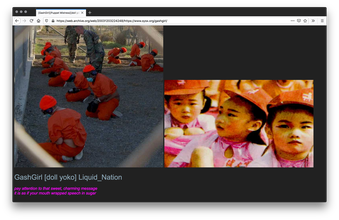
Wayback Machine, December 3, 2003; Screenshot, 2020, Firefox v76.0.1 on Mac OS 10.13.3; https://web.archive.org/web/20031203224248/https://www.sysx.org/gashgirl/
(21)
1993
Contested Zone
GashGirl
A long wintered night in the Contested Zone. (x)
Her biological membrane shivered as she multiplied through a posse of Virtual Activists, protesting the latest scam by some Euro Data Deviants.
She was late.
She was always late.
If she survived to be a Cortex Crone she’d still have trouble shifting from dormant to active modes.
She sensed some quivering data nearby and scanned a tribe of DNA sluts, her sisters in slime. (x) A rapid alpha exchange and she was back on the lookout for Circuit Boy, a fetishized replicant of the perfect HuMan HeMan, a dangerous technobimbo.
She self-replicated towards the banks of the Heavy Medal Boys—the Mbs. Minders of her arch enemy, Big Daddy Mainframe.
Her aim: to corrupt Big Daddy’s data
His mainframe. His Hard On.
Oh, suck me off.
Get rendered.
Get real.
Get fucked.
1993, GashGirl, http://www.sysx.org/gashgirl/arc/czone.html
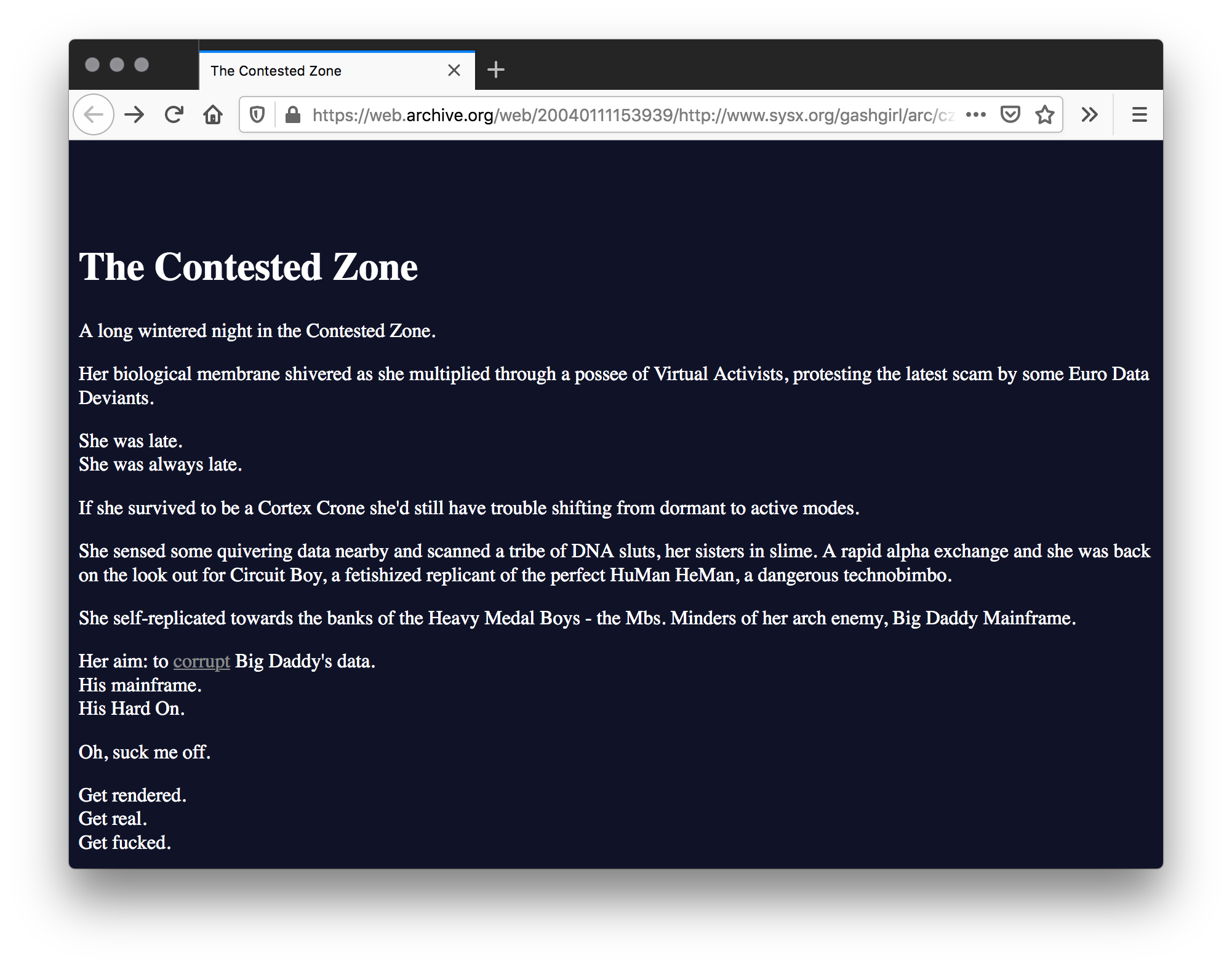
Screenshot, 2020, Firefox v76.0.1 on Mac OS 10.13.3; http://www.sysx.org/gashgirl/arc/czone.html
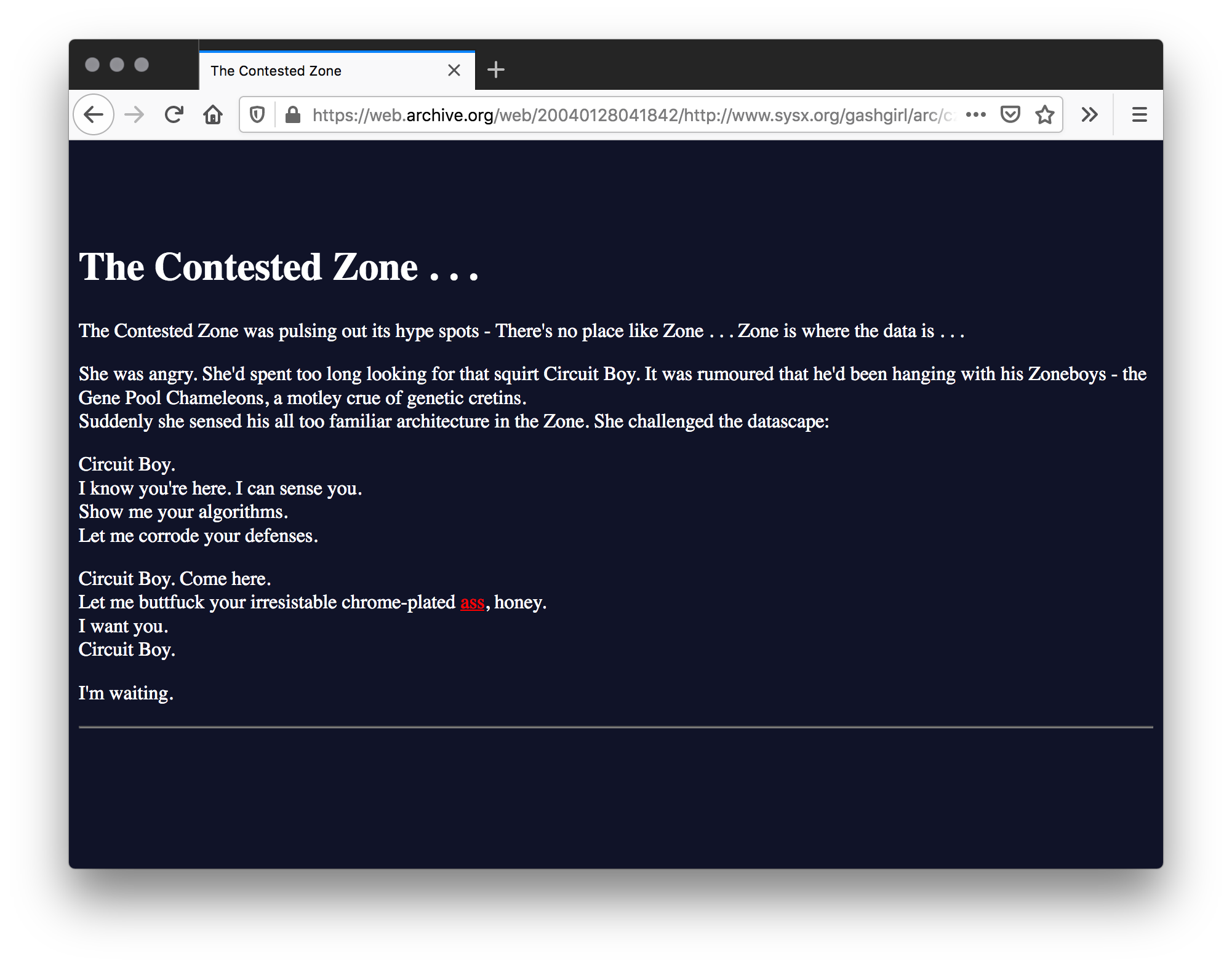
Screenshot, 2020, Firefox v76.0.1 on Mac OS 10.13.3; https://web.archive.org/web/20040128041842/http://www.sysx.org/gashgirl/arc/czone2.html
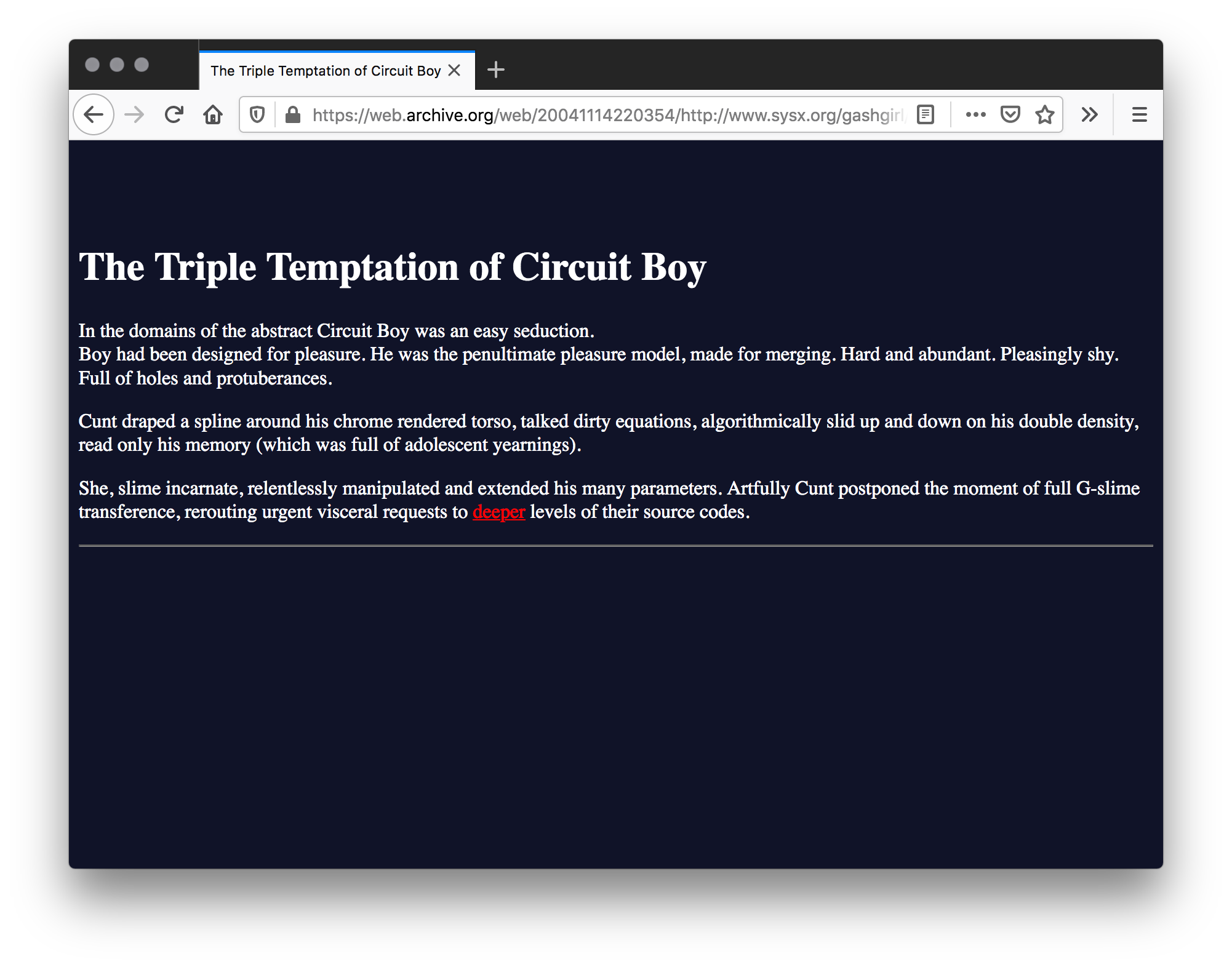
Screenshot, 2020, Firefox v76.0.1 on Mac OS 10.13.3; https://web.archive.org/web/20041114220354/http://www.sysx.org/gashgirl/arc/cboy.html
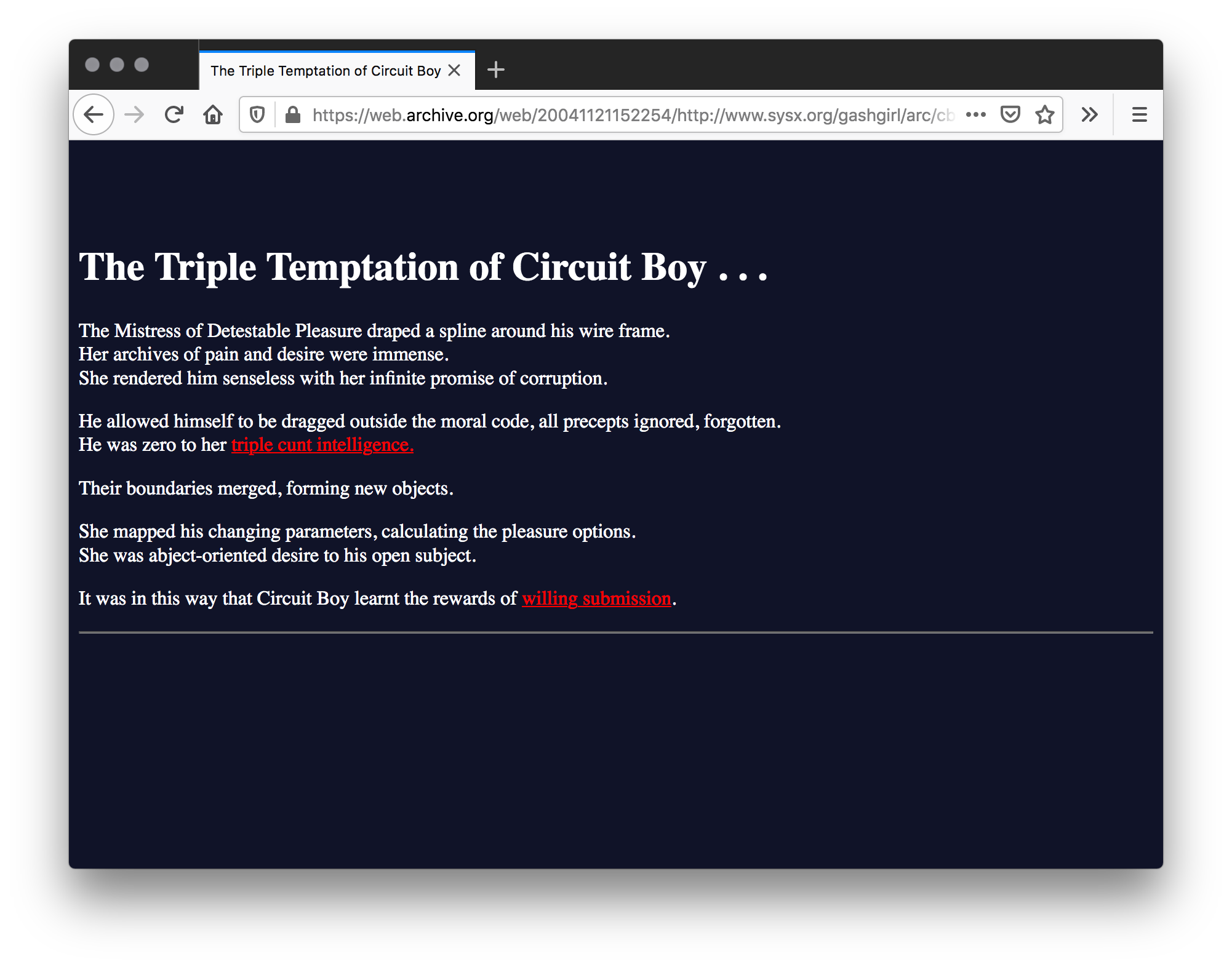
Screenshot, 2020, Firefox v76.0.1 on Mac OS 10.13.3; https://web.archive.org/web/20041121152254/http://www.sysx.org/gashgirl/arc/cboy2.html
A long wintered night in the Contested Zone. (x)
Her biological membrane shivered as she multiplied through a posse of Virtual Activists, protesting the latest scam by some Euro Data Deviants.
She was late.
She was always late.
If she survived to be a Cortex Crone she’d still have trouble shifting from dormant to active modes.
She sensed some quivering data nearby and scanned a tribe of DNA sluts, her sisters in slime. (x) A rapid alpha exchange and she was back on the lookout for Circuit Boy, a fetishized replicant of the perfect HuMan HeMan, a dangerous technobimbo.
She self-replicated towards the banks of the Heavy Medal Boys—the Mbs. Minders of her arch enemy, Big Daddy Mainframe.
Her aim: to corrupt Big Daddy’s data
His mainframe. His Hard On.
Oh, suck me off.
Get rendered.
Get real.
Get fucked.
1993, GashGirl, http://www.sysx.org/gashgirl/arc/czone.html
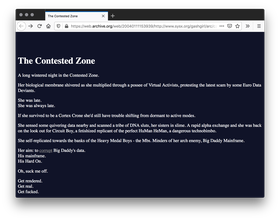
Screenshot, 2020, Firefox v76.0.1 on Mac OS 10.13.3; http://www.sysx.org/gashgirl/arc/czone.html
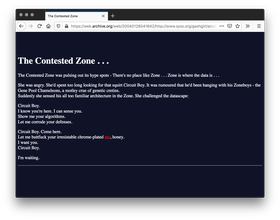
Screenshot, 2020, Firefox v76.0.1 on Mac OS 10.13.3; https://web.archive.org/web/20040128041842/http://www.sysx.org/gashgirl/arc/czone2.html
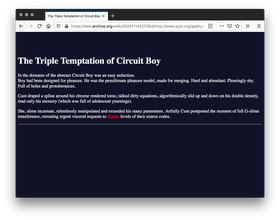
Screenshot, 2020, Firefox v76.0.1 on Mac OS 10.13.3; https://web.archive.org/web/20041114220354/http://www.sysx.org/gashgirl/arc/cboy.html
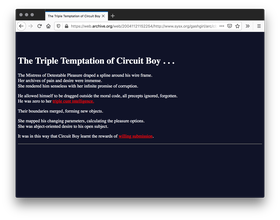
Screenshot, 2020, Firefox v76.0.1 on Mac OS 10.13.3; https://web.archive.org/web/20041121152254/http://www.sysx.org/gashgirl/arc/cboy2.html
(22)
1993
I Am My Own Freak Show
GashGirl
My devoted puppets do my bidding.
I am sublime thought replicating across spiralspace, (x) net vampyre preying on virgin code from every culture I can sink my fangs into.
I slide through one hundred reality checks, break one thousand locks, enter ten thousand hearts, whisper my poisonous ideas to an infinite number of minds.
1993, GashGirl, (x) https://web.archive.org/web/20040111154815/http://www.sysx.org/gashgirl/arc/freak.html
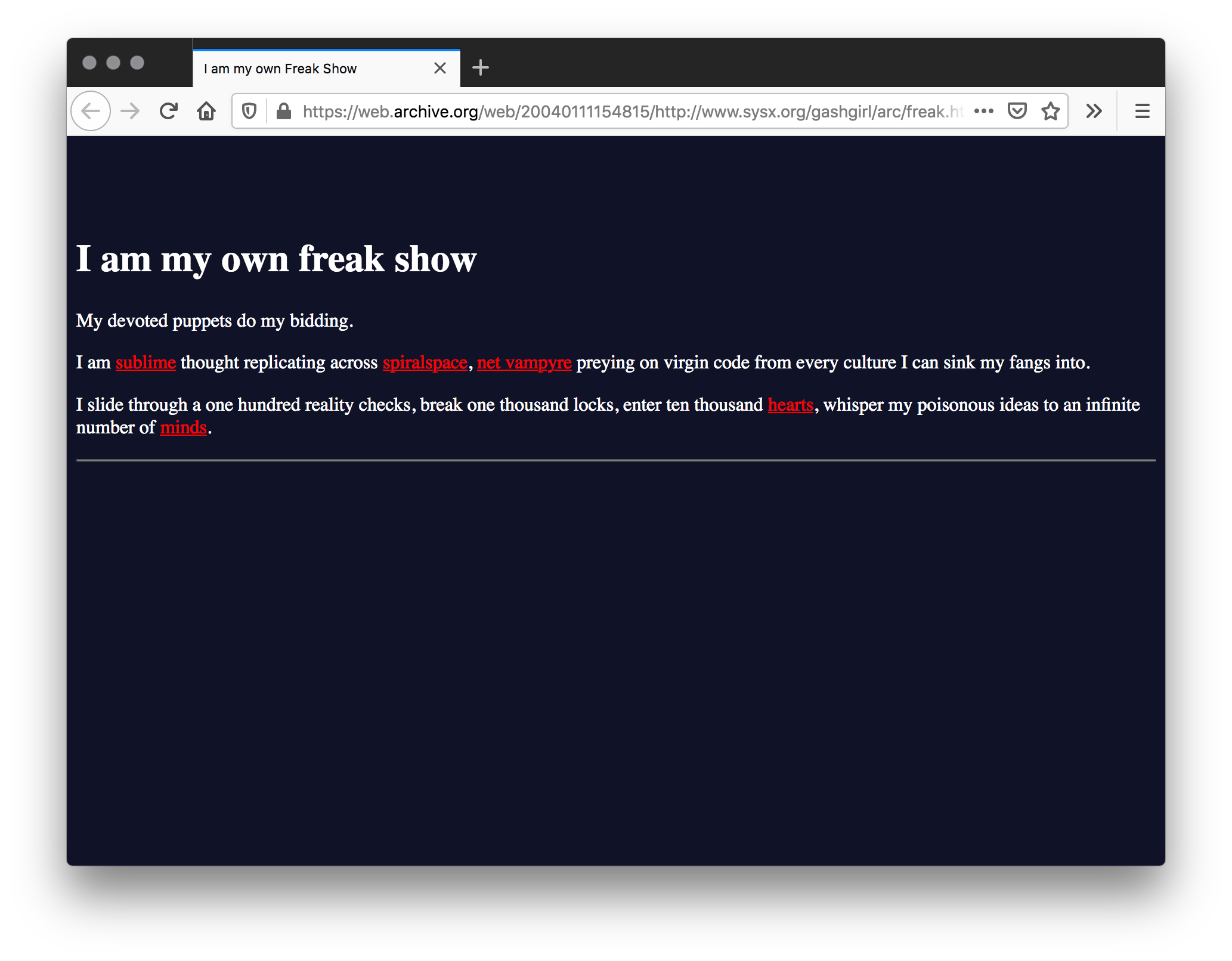
Wayback Machine, January 11, 2004; Screenshot, 2020, Firefox v76.0.1 on Mac OS 10.13.3; https://web.archive.org/web/20040111154815/http://www.sysx.org/gashgirl/arc/freak.html
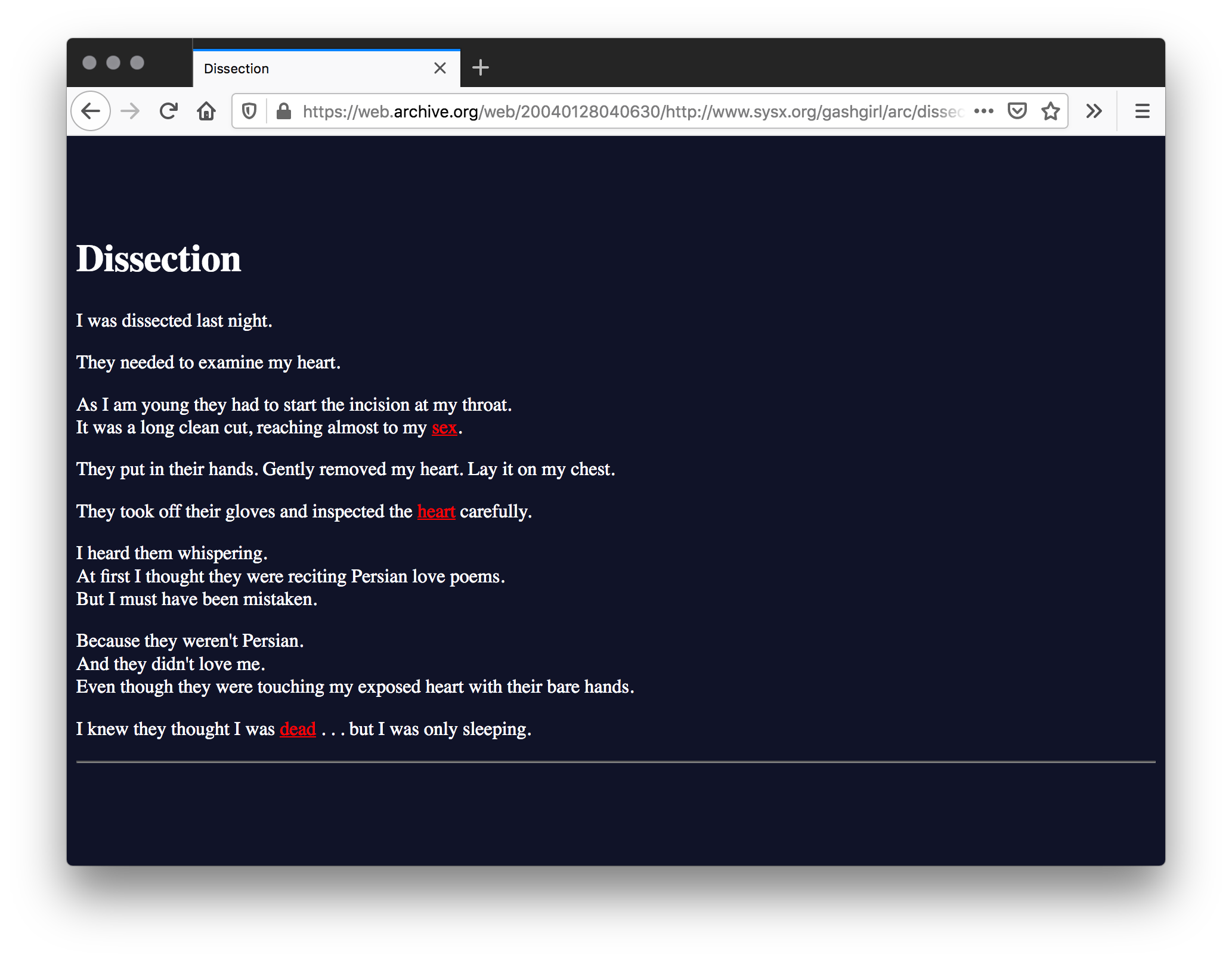
Wayback Machine, January 11, 2004; Screenshot, 2020, Firefox v76.0.1 on Mac OS 10.13.3; https://web.archive.org/web/20040128040630/http://www.sysx.org/gashgirl/arc/dissect.html
My devoted puppets do my bidding.
I am sublime thought replicating across spiralspace, (x) net vampyre preying on virgin code from every culture I can sink my fangs into.
I slide through one hundred reality checks, break one thousand locks, enter ten thousand hearts, whisper my poisonous ideas to an infinite number of minds.
1993, GashGirl, (x) https://web.archive.org/web/20040111154815/http://www.sysx.org/gashgirl/arc/freak.html
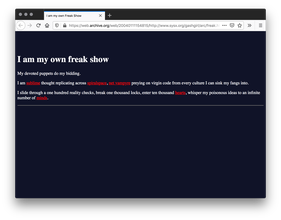
Wayback Machine, January 11, 2004; Screenshot, 2020, Firefox v76.0.1 on Mac OS 10.13.3; https://web.archive.org/web/20040111154815/http://www.sysx.org/gashgirl/arc/freak.html

Wayback Machine, January 11, 2004; Screenshot, 2020, Firefox v76.0.1 on Mac OS 10.13.3; https://web.archive.org/web/20040128040630/http://www.sysx.org/gashgirl/arc/dissect.html
(23)
1993–
1999
ParkBench
Nina Sobell, Emily Hartzell, Sonya Allin
In 1993, Sobell conceived of ParkBench, a network of kiosks, which, through videoconferencing, internet access, and a collaborative drawing space, would enable people in diverse neighborhoods to access the internet, talk to and see one another, and communicate collaboratively and creatively. Sobell and her collaborator Emily Hartzell were invited to be artists in residence at New York University's Center for Advanced Technology in order to develop ParkBench. Since this was before the Web's emergence, we used Director to design the ParkBench interface, which guides users to community and cultural information, and was the first such graphical interface for New York. Later, in 1994, after the Mosaic browser introduced a graphical interface for the internet, we adapted our interface, making it the first of its kind on the World Wide Web.
*Editor’s Note, as emailed to Mindy Seu by Nina Sobell on August 14, 2023: ”ParkBench was essentially a cyber-feminist endeavor, comprised of two women, a couple in fact, who involved other women to become a part of ParkBench to forge a place, a space and a time in cyberspace. The ParkBench kiosk interface designer was Shauna Church; the first participant was Dr. Naoko Tanese, the kiosk model maker was architect KImberly Neuhaus, Dr. Sonya Allin joined as a computer innovator, with many other women participating in a variety of cyber-performances and roles.”
1993–1999, Nina Sobell. Emily Hartzell, Sonya Allin, http://ninasobell.com/ninasobell/parkbench_docs/, excerpt from http://ninasobell.com/ninasobell/parkbench_docs/about.html; submitted by Nina Sobell
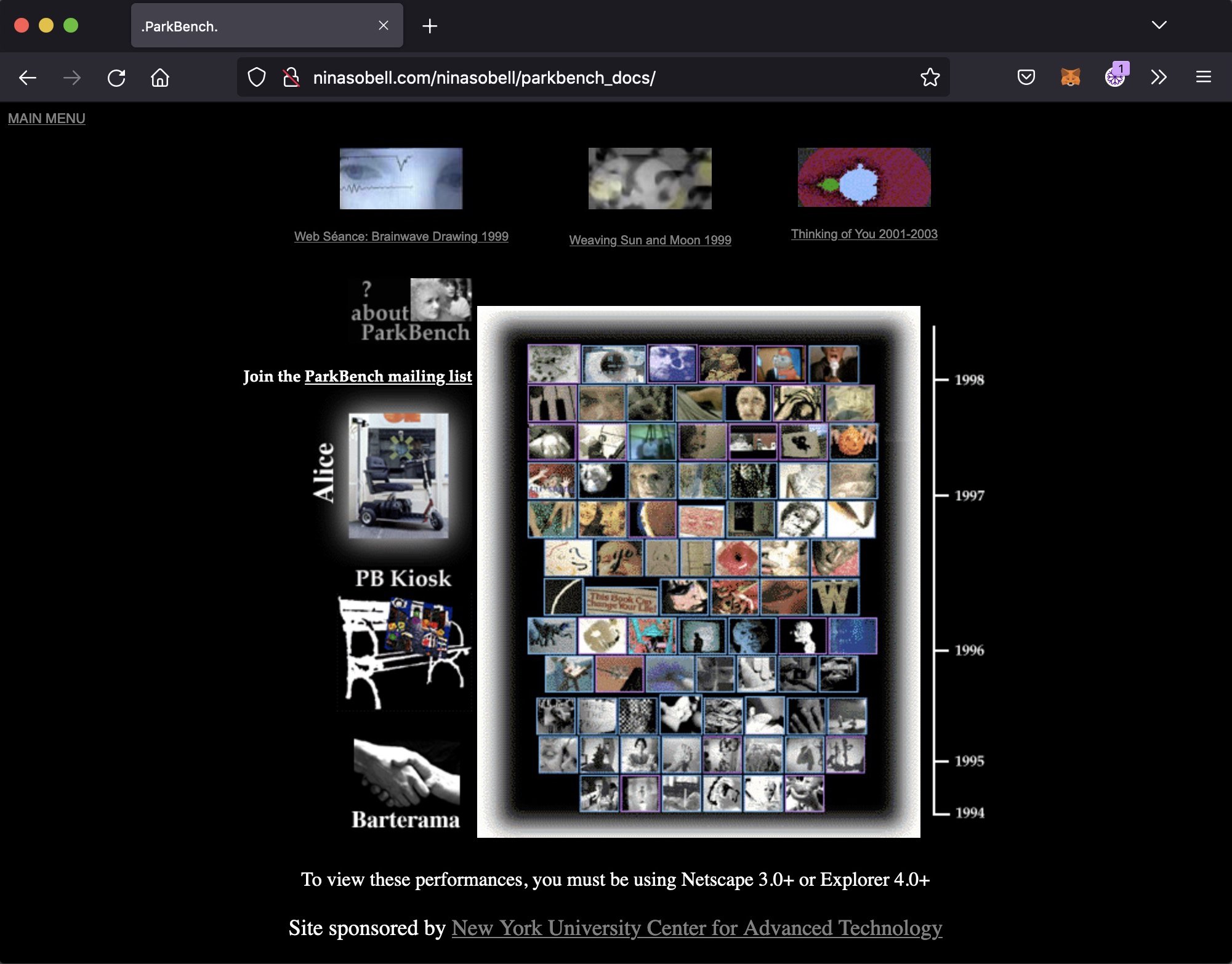
ParkBench, Screenshot, 2022, Firefox v108.0.1 on Mac OS 10.15.7; http://ninasobell.com/ninasobell/parkbench_docs/
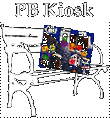
ParkBench, artifact from http://ninasobell.com/ninasobell/parkbench_docs/about.html
In 1993, Sobell conceived of ParkBench, a network of kiosks, which, through videoconferencing, internet access, and a collaborative drawing space, would enable people in diverse neighborhoods to access the internet, talk to and see one another, and communicate collaboratively and creatively. Sobell and her collaborator Emily Hartzell were invited to be artists in residence at New York University's Center for Advanced Technology in order to develop ParkBench. Since this was before the Web's emergence, we used Director to design the ParkBench interface, which guides users to community and cultural information, and was the first such graphical interface for New York. Later, in 1994, after the Mosaic browser introduced a graphical interface for the internet, we adapted our interface, making it the first of its kind on the World Wide Web.
*Editor’s Note, as emailed to Mindy Seu by Nina Sobell on August 14, 2023: ”ParkBench was essentially a cyber-feminist endeavor, comprised of two women, a couple in fact, who involved other women to become a part of ParkBench to forge a place, a space and a time in cyberspace. The ParkBench kiosk interface designer was Shauna Church; the first participant was Dr. Naoko Tanese, the kiosk model maker was architect KImberly Neuhaus, Dr. Sonya Allin joined as a computer innovator, with many other women participating in a variety of cyber-performances and roles.”
1993–1999, Nina Sobell. Emily Hartzell, Sonya Allin, http://ninasobell.com/ninasobell/parkbench_docs/, excerpt from http://ninasobell.com/ninasobell/parkbench_docs/about.html; submitted by Nina Sobell
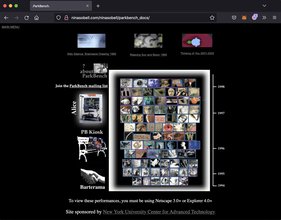
ParkBench, Screenshot, 2022, Firefox v108.0.1 on Mac OS 10.15.7; http://ninasobell.com/ninasobell/parkbench_docs/
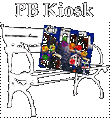
ParkBench, artifact from http://ninasobell.com/ninasobell/parkbench_docs/about.html
(24)
1993
A Rape in Cyberspace
Julian Dibbell
The facts begin (as they often do) with a time and a place. The time was a Monday night in March, and the place, as I’ve said, was the living room—which, due to the inviting warmth of its decor, is so invariably packed with chitchatters as to be roughly synonymous among LambdaMOOers with a party. So strong, indeed, is the sense of convivial common ground invested in the living room that a cruel mind could hardly imagine a better place in which to stage a violation of LambdaMOO’s communal spirit. And there was cruelty enough lurking in the appearance Mr. Bungle presented to the virtual world—he was at the time a fat, oleaginous, Bisquick-faced clown dressed in cum-stained harlequin garb and girdled with a mistletoe-and-hemlock belt whose buckle bore the quaint inscription “KISS ME UNDER THIS, BITCH!” But whether cruelty motivated his choice of crime scene is not among the established facts of the case. It is a fact only that he did choose the living room.
Julian Dibbell, excerpt https://www.villagevoice.com/a-rape-in-cyberspace/, 1993
Editor’s Note: This was introduced by Fuse Rintaro during a Cyberfeminism Index book tour panel at Civic Creative Base Tokyo on 2023 November 25, organized by Mizushina Mami. Other panelists included Melanie Hoff, Takahashi Sakino, Fuse Rintaro, Shikata Yukiko, and Mindy Seu. —MS”
http://www.juliandibbell.com/articles/a-rape-in-cyberspace/
The facts begin (as they often do) with a time and a place. The time was a Monday night in March, and the place, as I’ve said, was the living room—which, due to the inviting warmth of its decor, is so invariably packed with chitchatters as to be roughly synonymous among LambdaMOOers with a party. So strong, indeed, is the sense of convivial common ground invested in the living room that a cruel mind could hardly imagine a better place in which to stage a violation of LambdaMOO’s communal spirit. And there was cruelty enough lurking in the appearance Mr. Bungle presented to the virtual world—he was at the time a fat, oleaginous, Bisquick-faced clown dressed in cum-stained harlequin garb and girdled with a mistletoe-and-hemlock belt whose buckle bore the quaint inscription “KISS ME UNDER THIS, BITCH!” But whether cruelty motivated his choice of crime scene is not among the established facts of the case. It is a fact only that he did choose the living room.
Julian Dibbell, excerpt https://www.villagevoice.com/a-rape-in-cyberspace/, 1993
Editor’s Note: This was introduced by Fuse Rintaro during a Cyberfeminism Index book tour panel at Civic Creative Base Tokyo on 2023 November 25, organized by Mizushina Mami. Other panelists included Melanie Hoff, Takahashi Sakino, Fuse Rintaro, Shikata Yukiko, and Mindy Seu. —MS”
http://www.juliandibbell.com/articles/a-rape-in-cyberspace/
(25)
1994
Black to the Future: Interviews with Samuel R. Delany, Greg Tate, and Tricia Rose
Mark Dery
The interviews that follow began with a conundrum: Why do so few African Americans write science fiction, a genre whose close encounters with the Other—the stranger in a strange land—would seem uniquely suited to the concerns of African-American novelists? Yet, to my knowledge, only Samuel R. Delany, Octavia Butler, (x) Steve Barnes, and Charles Saunders have chosen to write within the genre conventions of science fiction. This is especially perplexing in light of the fact that African Americans, in a very real sense, are the descendants of alien abductees; they inhabit a sci-fi nightmare in which unseen but no less impassable force fields of intolerance frustrate their movements; official histories undo what has been done; and technology is too often brought to bear on black bodies (branding, forced sterilization, the Tuskegee experiment, and tasers come readily to mind). […]
Speculative fiction that treats African-American themes and addresses African-American concerns in the context of twentieth-century technoculture—and, more generally, African-American signification that appropriates images of technology and a prosthetically enhanced future—might, for want of a better term, be called “Afrofuturism.” (x) The notion of Afrofuturism gives rise to a troubling antinomy: Can a community whose past has been deliberately rubbed out, and whose energies have subsequently been consumed by the search for legible traces of its history, imagine possible futures? Furthermore, isn’t the unreal estate of the future already owned by the technocrats, futurologists, streamliners, and set designers […] who have engineered our collective fantasies?
1994, Mark Dery, in Flame Wars: The Discourse of Cyberculture, ed. Mark Dery (Durham: Duke University Press, 1994), pp. 179–222; excerpt pp. 179–180
https://www.are.na/block/7557465
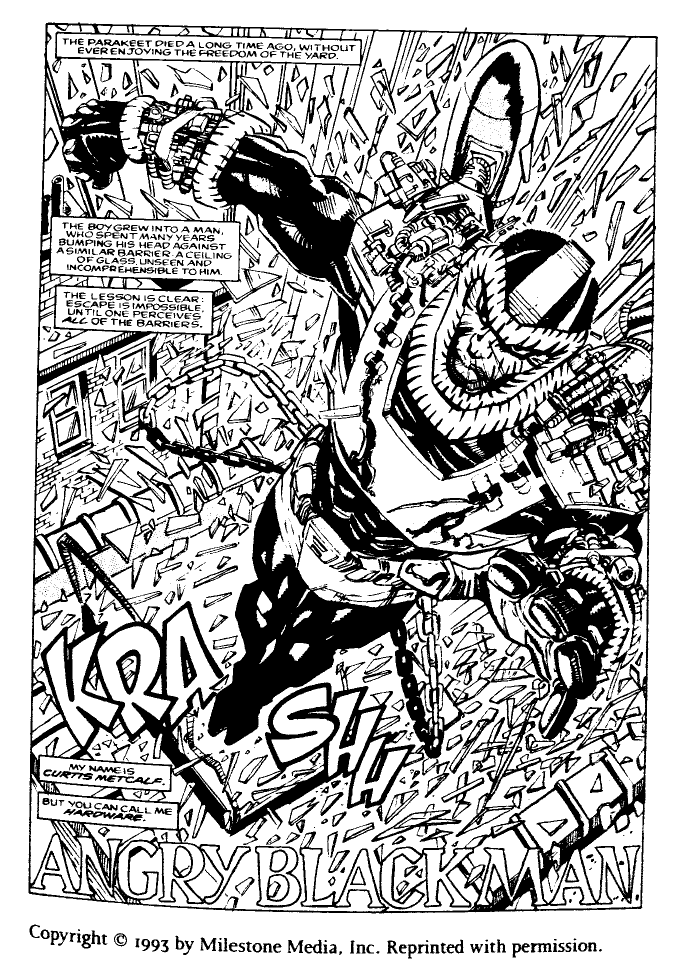
Image from Flame Wars: The Discourse of Cyberculture, p.181

Copyright © 1993 by Milestone Media, Inc; image from Flame Wars: The Discourse of Cyberculture, p.184
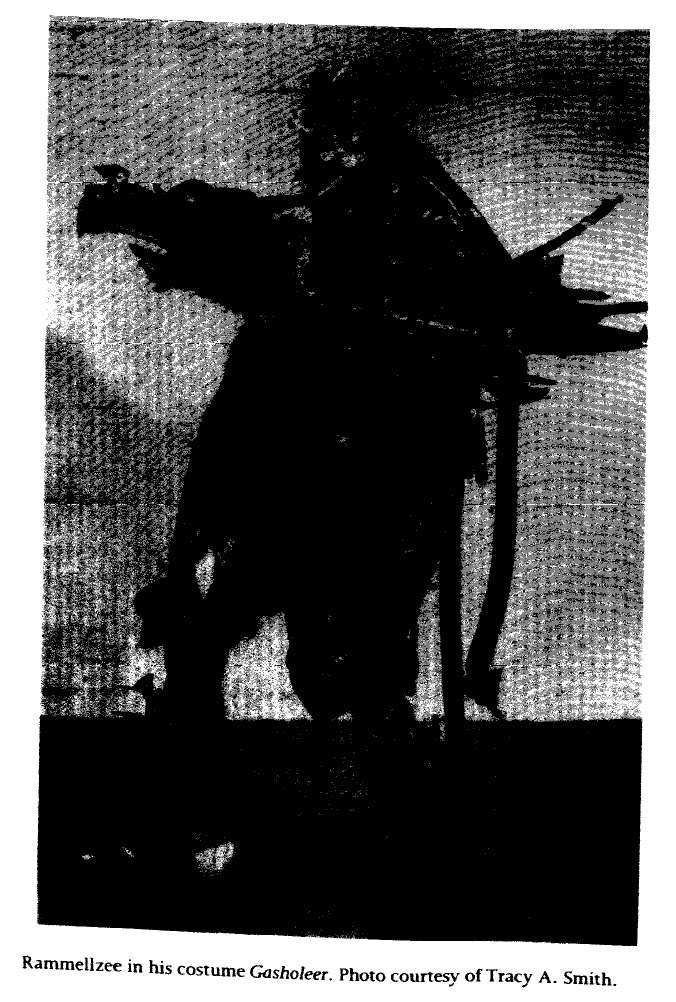
“Rammelizee in his costume Gasholeer. Photo courtesy of Tracy A. Smith”; image from Flame Wars: The Discourse of Cyberculture, p.186
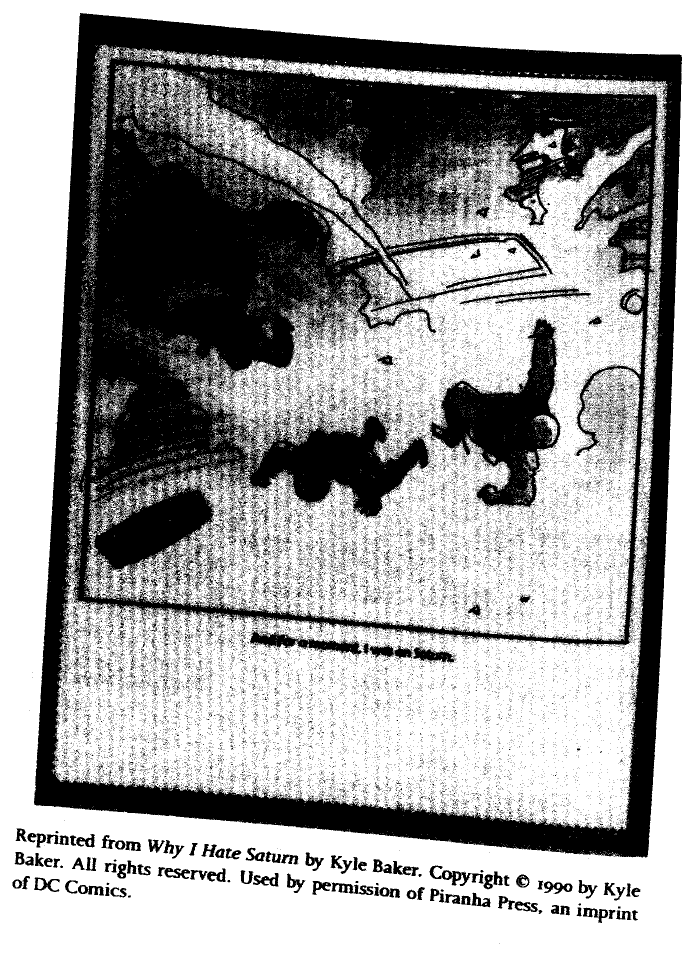
“Reprinted from Why I Hate Saturn by Kyle Baker. Copyright © 1990 by Kyle Baker. All rights reserved. Pirhana Press, an imprint of DC Comics”; image from Flame Wars: The Discourse of Cyberculture, p.220
The interviews that follow began with a conundrum: Why do so few African Americans write science fiction, a genre whose close encounters with the Other—the stranger in a strange land—would seem uniquely suited to the concerns of African-American novelists? Yet, to my knowledge, only Samuel R. Delany, Octavia Butler, (x) Steve Barnes, and Charles Saunders have chosen to write within the genre conventions of science fiction. This is especially perplexing in light of the fact that African Americans, in a very real sense, are the descendants of alien abductees; they inhabit a sci-fi nightmare in which unseen but no less impassable force fields of intolerance frustrate their movements; official histories undo what has been done; and technology is too often brought to bear on black bodies (branding, forced sterilization, the Tuskegee experiment, and tasers come readily to mind). […]
Speculative fiction that treats African-American themes and addresses African-American concerns in the context of twentieth-century technoculture—and, more generally, African-American signification that appropriates images of technology and a prosthetically enhanced future—might, for want of a better term, be called “Afrofuturism.” (x) The notion of Afrofuturism gives rise to a troubling antinomy: Can a community whose past has been deliberately rubbed out, and whose energies have subsequently been consumed by the search for legible traces of its history, imagine possible futures? Furthermore, isn’t the unreal estate of the future already owned by the technocrats, futurologists, streamliners, and set designers […] who have engineered our collective fantasies?
1994, Mark Dery, in Flame Wars: The Discourse of Cyberculture, ed. Mark Dery (Durham: Duke University Press, 1994), pp. 179–222; excerpt pp. 179–180
https://www.are.na/block/7557465
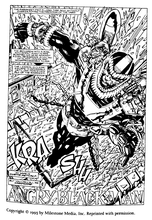
Image from Flame Wars: The Discourse of Cyberculture, p.181

Copyright © 1993 by Milestone Media, Inc; image from Flame Wars: The Discourse of Cyberculture, p.184
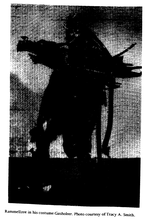
“Rammelizee in his costume Gasholeer. Photo courtesy of Tracy A. Smith”; image from Flame Wars: The Discourse of Cyberculture, p.186
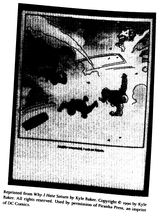
“Reprinted from Why I Hate Saturn by Kyle Baker. Copyright © 1990 by Kyle Baker. All rights reserved. Pirhana Press, an imprint of DC Comics”; image from Flame Wars: The Discourse of Cyberculture, p.220
(26)
1994
L0ve0ne
Judy Malloy
l0ve0ne was the first work in the Eastgate (x) Web Workshop. In this seminal web-based hypernovella (x)—of Xreality, changing identities, physical computing, robotic Pinocchios, Rajput miniatures that morph into parallel narratives, barns full of old computers, and country western songs on German radio—an American writer on Holiday in Germany and France is immersed in an underground world of European hacker-artist culture.
“Time is disordered, there is no beginning or end—it is like a collage. It is, therefore, a story without the typical narrative characteristics (introduction, exposition, denouement). LoveOne is a metaphor about the Internet, where you can find everything, pages for everyone and on any subject. In LoveOne there are also emotions, sex, music, cars, friends, fun, modems, the beach, all mixed up, as if it were an Internet portal …”
1994, Judy Malloy, http://www.judymalloy.net/l0ve0ne_entry.html; excerpt from Judy Malloy; quotation from Joan Campas, *Dichtung-Digital *
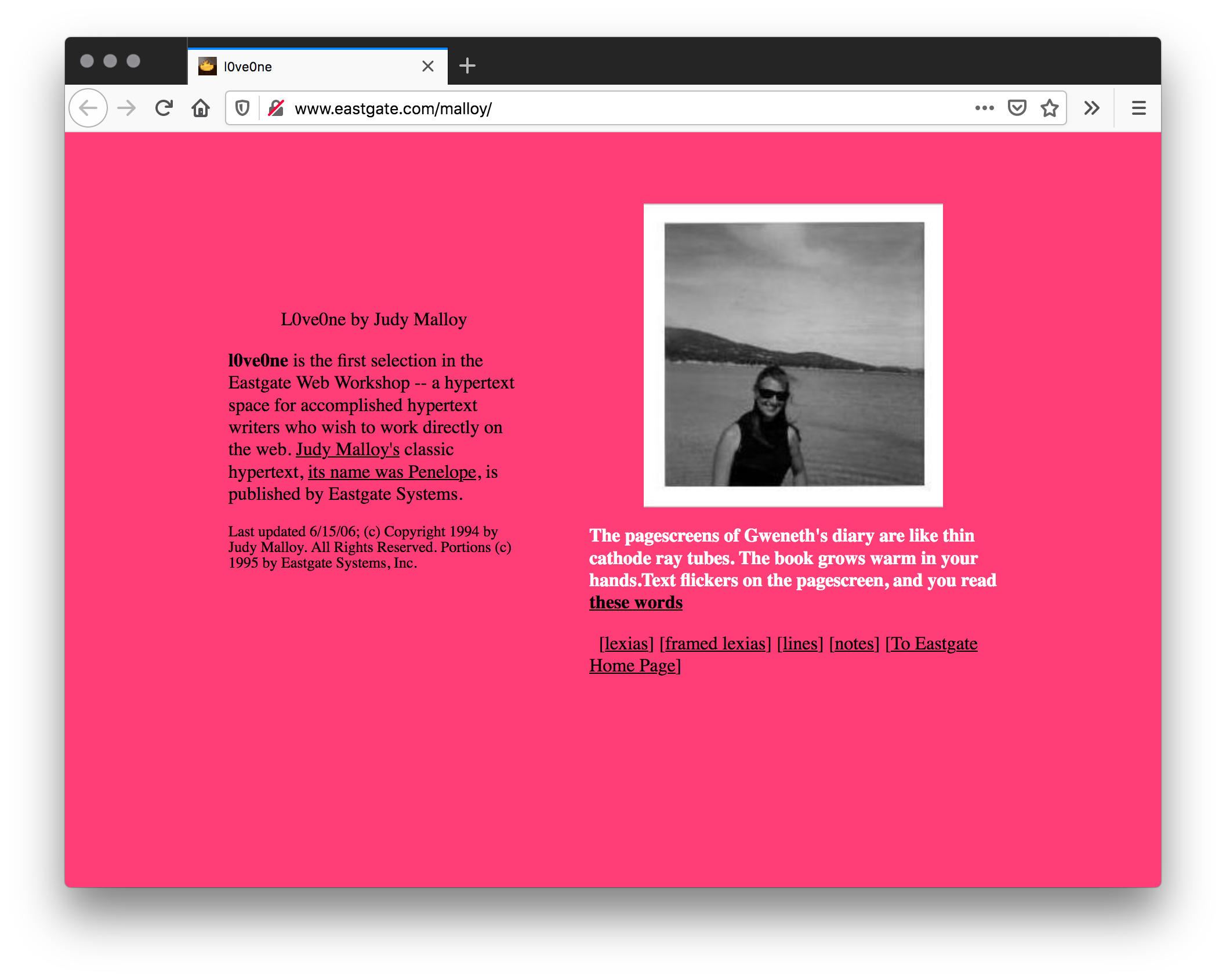
Screenshot, 2020, Firefox v76.0.1 on Mac OS 10.13.3; http://www.eastgate.com/malloy/
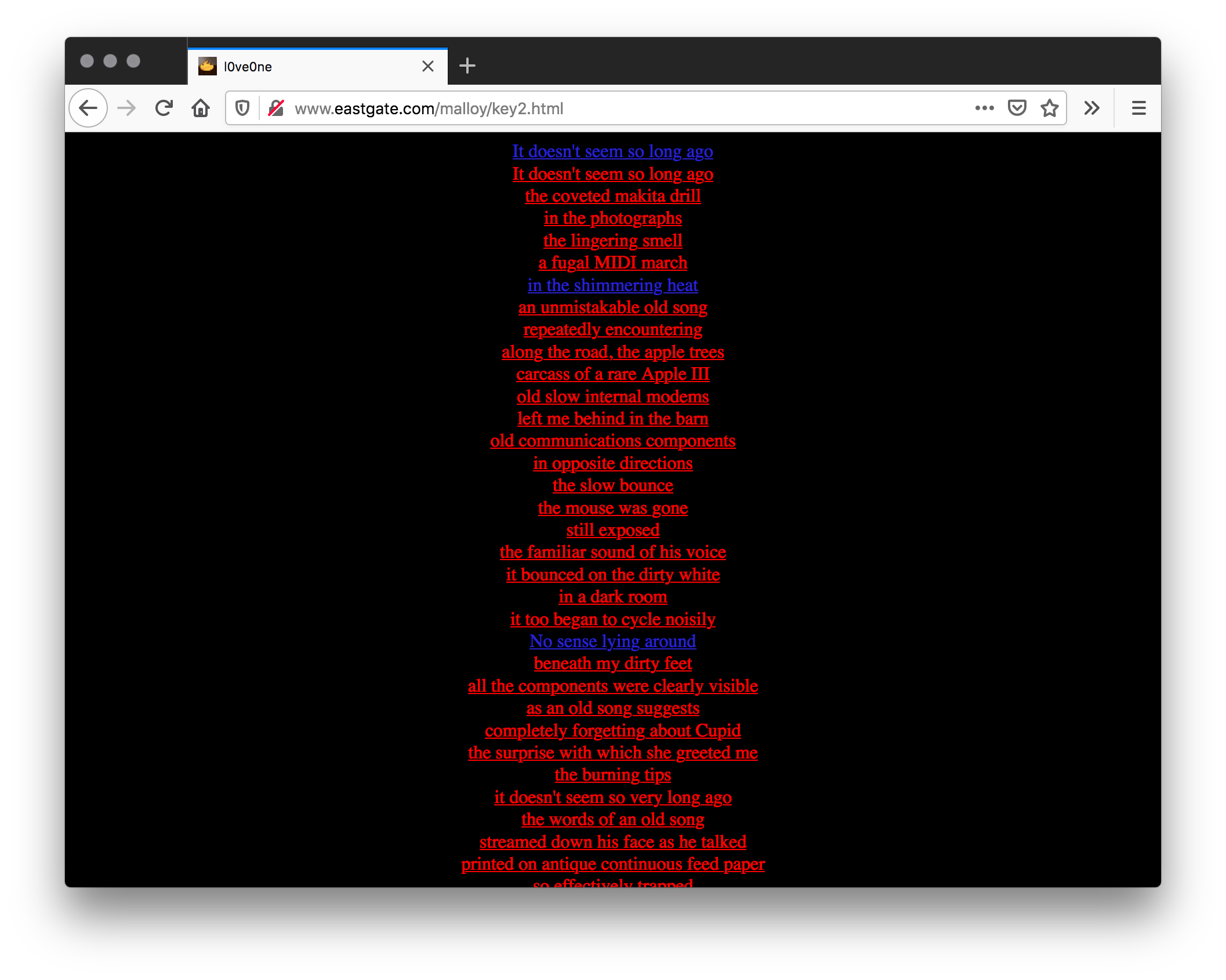
Screenshot, 2020, Firefox v76.0.1 on Mac OS 10.13.3; http://www.eastgate.com/malloy/key2.html
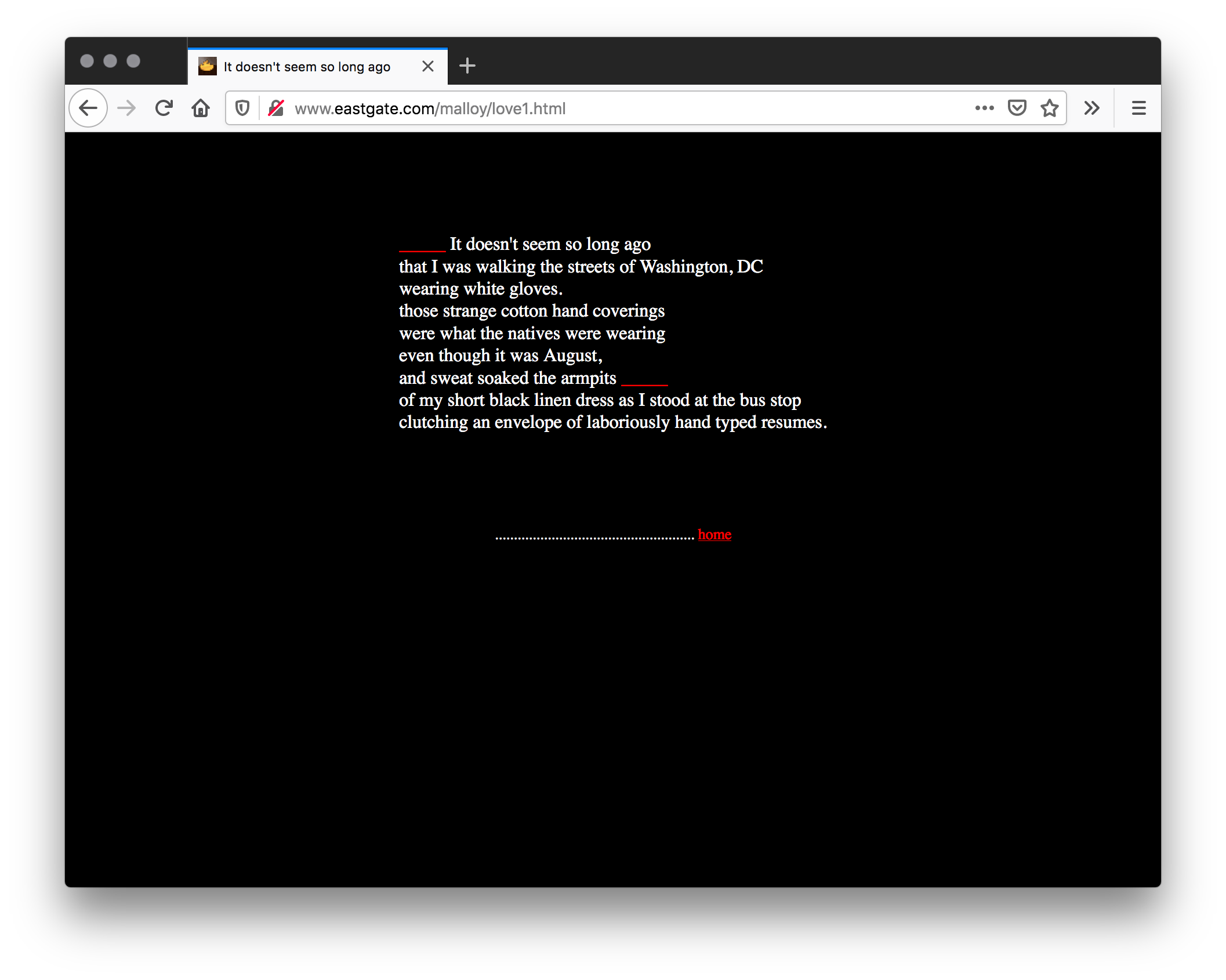
Screenshot, 2020, Firefox v76.0.1 on Mac OS 10.13.3; http://www.eastgate.com/malloy/love1.html
l0ve0ne was the first work in the Eastgate (x) Web Workshop. In this seminal web-based hypernovella (x)—of Xreality, changing identities, physical computing, robotic Pinocchios, Rajput miniatures that morph into parallel narratives, barns full of old computers, and country western songs on German radio—an American writer on Holiday in Germany and France is immersed in an underground world of European hacker-artist culture.
“Time is disordered, there is no beginning or end—it is like a collage. It is, therefore, a story without the typical narrative characteristics (introduction, exposition, denouement). LoveOne is a metaphor about the Internet, where you can find everything, pages for everyone and on any subject. In LoveOne there are also emotions, sex, music, cars, friends, fun, modems, the beach, all mixed up, as if it were an Internet portal …”
1994, Judy Malloy, http://www.judymalloy.net/l0ve0ne_entry.html; excerpt from Judy Malloy; quotation from Joan Campas, *Dichtung-Digital *

Screenshot, 2020, Firefox v76.0.1 on Mac OS 10.13.3; http://www.eastgate.com/malloy/
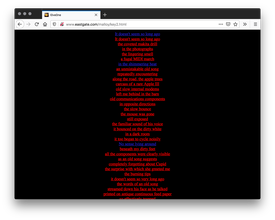
Screenshot, 2020, Firefox v76.0.1 on Mac OS 10.13.3; http://www.eastgate.com/malloy/key2.html
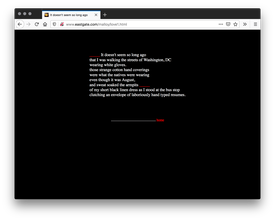
Screenshot, 2020, Firefox v76.0.1 on Mac OS 10.13.3; http://www.eastgate.com/malloy/love1.html
(27)
1994
Cyber Rag
Jaime Levy
Jaime spent her years at NYU experimenting with interactive media. For her master’s thesis, she combined the do-it-yourself ethos of punk with the emerging possibilities of desktop publishing, producing an electronic magazine, Cyber Rag, on floppy disk. (x) With color-printed labels Krazy Glued onto each “issue,” Cyber Rag looked the part of a punk-rock fanzine. Loaded onto a consumer Mac, its stories came to life with images pilfered from the Village Voice, the Whole Earth Review, Mondo 2000, and Newsweek, collaged together onscreen as though they’d been xeroxed by hand. Cyber Rag was the first publication of its kind, built with Apple HyperCard and MacPaint. Along with her animations, Jaime added edgy interactive games (in one, you chase Manuel Noriega around Panama), hacker how-tos, and catty musings about hippies, sneaking into computer trade shows, and cyberspace.
1994, Jaime Levy; excerpt from Claire L. Evans, Broad Band: The Untold Story of the Women Who Made the Internet (x) (New York: Penguin, 2018), pp.182–183
https://nymag.com/intelligencer/2018/04/claire-evanss-broad-band-excerpt.html https://jaimelevy.com/press/highperformance.pdf

Photo of Jaime Levy from https://nymag.com/intelligencer/2018/04/claire-evanss-broad-band-excerpt.html
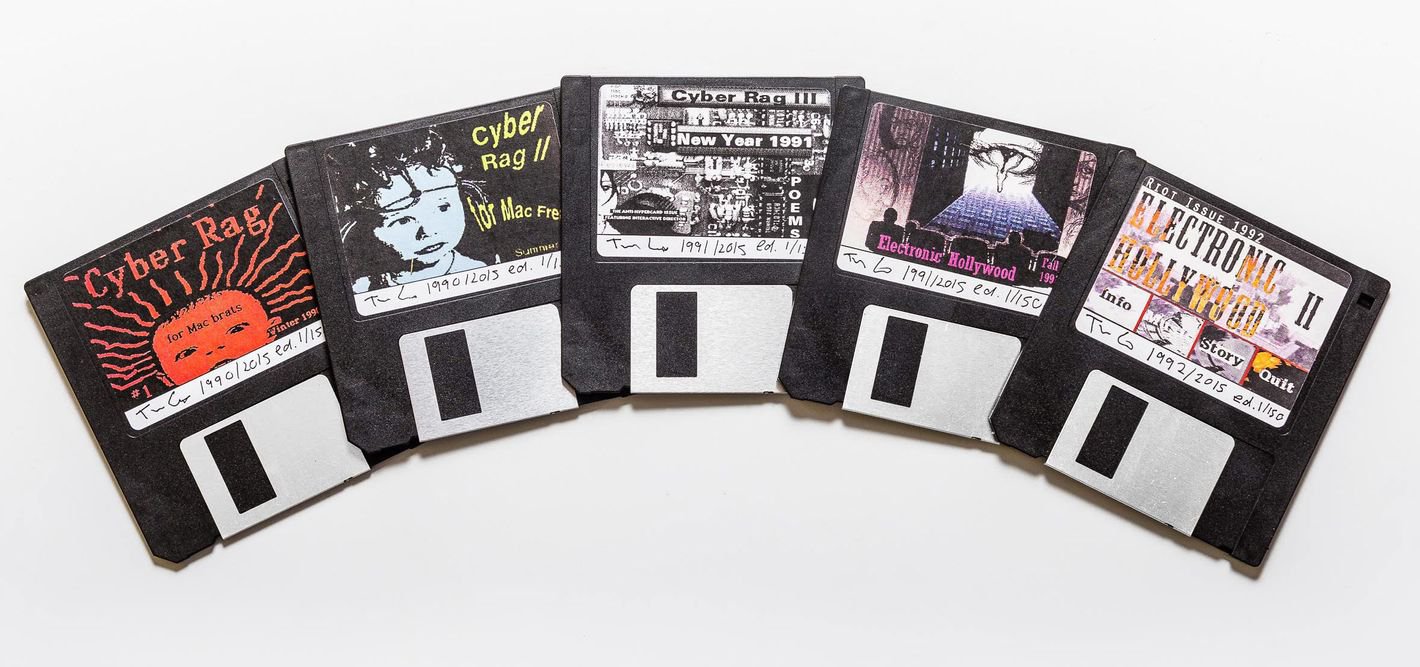
Floppy disks of Cyber Rag, image from https://nymag.com/intelligencer/2018/04/claire-evanss-broad-band-excerpt.html
Jaime spent her years at NYU experimenting with interactive media. For her master’s thesis, she combined the do-it-yourself ethos of punk with the emerging possibilities of desktop publishing, producing an electronic magazine, Cyber Rag, on floppy disk. (x) With color-printed labels Krazy Glued onto each “issue,” Cyber Rag looked the part of a punk-rock fanzine. Loaded onto a consumer Mac, its stories came to life with images pilfered from the Village Voice, the Whole Earth Review, Mondo 2000, and Newsweek, collaged together onscreen as though they’d been xeroxed by hand. Cyber Rag was the first publication of its kind, built with Apple HyperCard and MacPaint. Along with her animations, Jaime added edgy interactive games (in one, you chase Manuel Noriega around Panama), hacker how-tos, and catty musings about hippies, sneaking into computer trade shows, and cyberspace.
1994, Jaime Levy; excerpt from Claire L. Evans, Broad Band: The Untold Story of the Women Who Made the Internet (x) (New York: Penguin, 2018), pp.182–183
https://nymag.com/intelligencer/2018/04/claire-evanss-broad-band-excerpt.html https://jaimelevy.com/press/highperformance.pdf

Photo of Jaime Levy from https://nymag.com/intelligencer/2018/04/claire-evanss-broad-band-excerpt.html

Floppy disks of Cyber Rag, image from https://nymag.com/intelligencer/2018/04/claire-evanss-broad-band-excerpt.html
(28)
1994
Mothers and Daughters of Invention: Notes for a Revised History of Technology
Autumn Stanley
If I could give this section its own epigraph, I would invert Dante’s famous sign over the gates of hell: Let all who enter here take hope—and abandon their deepest stereotypes. […] As with revisions in the history of technology, (x) the attempt must be made. The central target is obviously the stereotype that women do not invent, but this is only one of the many heads of the Hydra, and all of its many interlocking and supporting stereotypes and myths must also be chopped off, or it will simply grow back again, strong as ever. One of the most important of its heads is the myth of the Man/male the Hunter/Provider. Not to spend an undue amount of time here […] I will simply state the opposite, positive form of the most important stereotypes that need to be abandoned for a fair assessment of (a) this book and (b) women’s contributions to technology:
Women hunt.
Women provide.
Women invent.
Women rule.
Women heal. (x)
1993, Autumn Stanley (Metuchen, NJ: Scarecrow Press, 1993); excerpt pp. xlvi–xlvii
https://www.rutgersuniversitypress.org/mothers-and-daughters-of-invention/9780813521978
If I could give this section its own epigraph, I would invert Dante’s famous sign over the gates of hell: Let all who enter here take hope—and abandon their deepest stereotypes. […] As with revisions in the history of technology, (x) the attempt must be made. The central target is obviously the stereotype that women do not invent, but this is only one of the many heads of the Hydra, and all of its many interlocking and supporting stereotypes and myths must also be chopped off, or it will simply grow back again, strong as ever. One of the most important of its heads is the myth of the Man/male the Hunter/Provider. Not to spend an undue amount of time here […] I will simply state the opposite, positive form of the most important stereotypes that need to be abandoned for a fair assessment of (a) this book and (b) women’s contributions to technology:
Women hunt.
Women provide.
Women invent.
Women rule.
Women heal. (x)
1993, Autumn Stanley (Metuchen, NJ: Scarecrow Press, 1993); excerpt pp. xlvi–xlvii
https://www.rutgersuniversitypress.org/mothers-and-daughters-of-invention/9780813521978
(29)
1994
Flame Wars: The Discourse of Cyberculture
Mark Dery
Flame wars are a less ritualized, cybercultural counterpart to the African-American phenomenon (x) known as “the dozens,” in which duelists one-up each other with elaborate, sometimes rhyming gibes involving the sexual exploits of each other’s mothers. At their best, flame wars give way to tour-de-force jeremiads called “rants”—demented soliloquies that elevate soapbox demagoguery to a guerilla art form. [They are] characterized by fist-banging punctuation, emphatic capitals, and the kill-‘em-all-and-let-God-sort-‘em-out rhetoric. […] This special issue’s title is intentionally ironic. The tone, as in most intellectual discourse, is decorous; there are no flame wars here, and no rants in the proper sense […] Even so, the compu-slang title reminds us that our interaction with the world around us in increasingly mediated by computer technology, and that, bit by digital bit, we are being […] transformed into cyborgian hybrids of technology and biology (x) through our ever-more-frequent interactions with machines, or with one another through technological interfaces.
1994, Mark Dery, ed. (Durham: Duke University Press, 1994); excerpt from Mark Dery, introduction to Flame Wars, pp. 4–6
Contributors include Anne Balsamo, Gareth Branwyn, Scott Bukatman, Pat Cadigan, Gary Chapman, Erik Davis, Manuel DeLanda, Mark Dery, Julian Dibbell, Marc Laidlaw, Mark Pauline, Peter Schwenger, Vivian Sobchack, Claudia Springer, and Emily White.
https://www.dukeupress.edu/Flame-Wars/
Flame wars are a less ritualized, cybercultural counterpart to the African-American phenomenon (x) known as “the dozens,” in which duelists one-up each other with elaborate, sometimes rhyming gibes involving the sexual exploits of each other’s mothers. At their best, flame wars give way to tour-de-force jeremiads called “rants”—demented soliloquies that elevate soapbox demagoguery to a guerilla art form. [They are] characterized by fist-banging punctuation, emphatic capitals, and the kill-‘em-all-and-let-God-sort-‘em-out rhetoric. […] This special issue’s title is intentionally ironic. The tone, as in most intellectual discourse, is decorous; there are no flame wars here, and no rants in the proper sense […] Even so, the compu-slang title reminds us that our interaction with the world around us in increasingly mediated by computer technology, and that, bit by digital bit, we are being […] transformed into cyborgian hybrids of technology and biology (x) through our ever-more-frequent interactions with machines, or with one another through technological interfaces.
1994, Mark Dery, ed. (Durham: Duke University Press, 1994); excerpt from Mark Dery, introduction to Flame Wars, pp. 4–6
Contributors include Anne Balsamo, Gareth Branwyn, Scott Bukatman, Pat Cadigan, Gary Chapman, Erik Davis, Manuel DeLanda, Mark Dery, Julian Dibbell, Marc Laidlaw, Mark Pauline, Peter Schwenger, Vivian Sobchack, Claudia Springer, and Emily White.
https://www.dukeupress.edu/Flame-Wars/
(30)
1994
Cybernetic Hookers
Sadie Plant
Cyberpunk and chaos culture are peppered with wild women and bad girls, transgressions of organisation, the freaks and mutants who find their own languages, the non-members, the nomads, the sex that are not one; leftovers from history; those who have slipped past its filters too soon and accessed the future before its time, hybrid (x) assemblages of what were once called human and machine on the run from their confinement to the world of man and things. Cyborgs are aliens, addicts and trippers burn past security and through the ice of a culture devoted to spectacle, hacking the screens, and exceeding the familiar. Avatars of the matrix; downloading from cyberspace. They are no longer human. Perhaps they never were.
1994, Sadie Plant, Newsletter / Australian Network for Art and Technology, April/May 1994, p. 5
Cyberpunk and chaos culture are peppered with wild women and bad girls, transgressions of organisation, the freaks and mutants who find their own languages, the non-members, the nomads, the sex that are not one; leftovers from history; those who have slipped past its filters too soon and accessed the future before its time, hybrid (x) assemblages of what were once called human and machine on the run from their confinement to the world of man and things. Cyborgs are aliens, addicts and trippers burn past security and through the ice of a culture devoted to spectacle, hacking the screens, and exceeding the familiar. Avatars of the matrix; downloading from cyberspace. They are no longer human. Perhaps they never were.
1994, Sadie Plant, Newsletter / Australian Network for Art and Technology, April/May 1994, p. 5
(31)
1994
FLAME/FLAMME: Sisters On-Line
Genevieve Bro-Grebe
At the time of the 5th Regional Conference on Women (Dakar, 1994) Information and Communication Technologies (ICTs) as an issue and as a tool for women’s agenda was almost ignored. The ICTs for women issue was highlighted in the Beijing Conference, but poorly at the African level. Since then, the context of ICTs in Africa has evolved a lot, and different initiatives have been set up for women in the field of ICTs in Africa. (x) African women must seize the Beijing+5 evaluation process to use, get information, be trained and have their say in the ICT field as well as in the Beijing assessment process, within Africa and linking to the global processes. Thus FLAME/FLAMME: Sisters On-Line Website was developed by 12 committed women’s NGOs to meet this need.
1994, https://web.archive.org/web/20011221203321/http://flamme.org/index.html
Members included Genevieve Bro-Grebe, Dr. Angie Dawa, Juliet Ddungu, Leonor Domingos, Ndey Jobarteh, Sharon Kafwembe Sichilongo, Suko Mdlawuzo, Ndeye Marianne Thioye, Alka Larkan, Lornah Murage, Sara Longwe, Rose Akinyi Okech, Jenny Radloff, and Juliet Were.
Africa
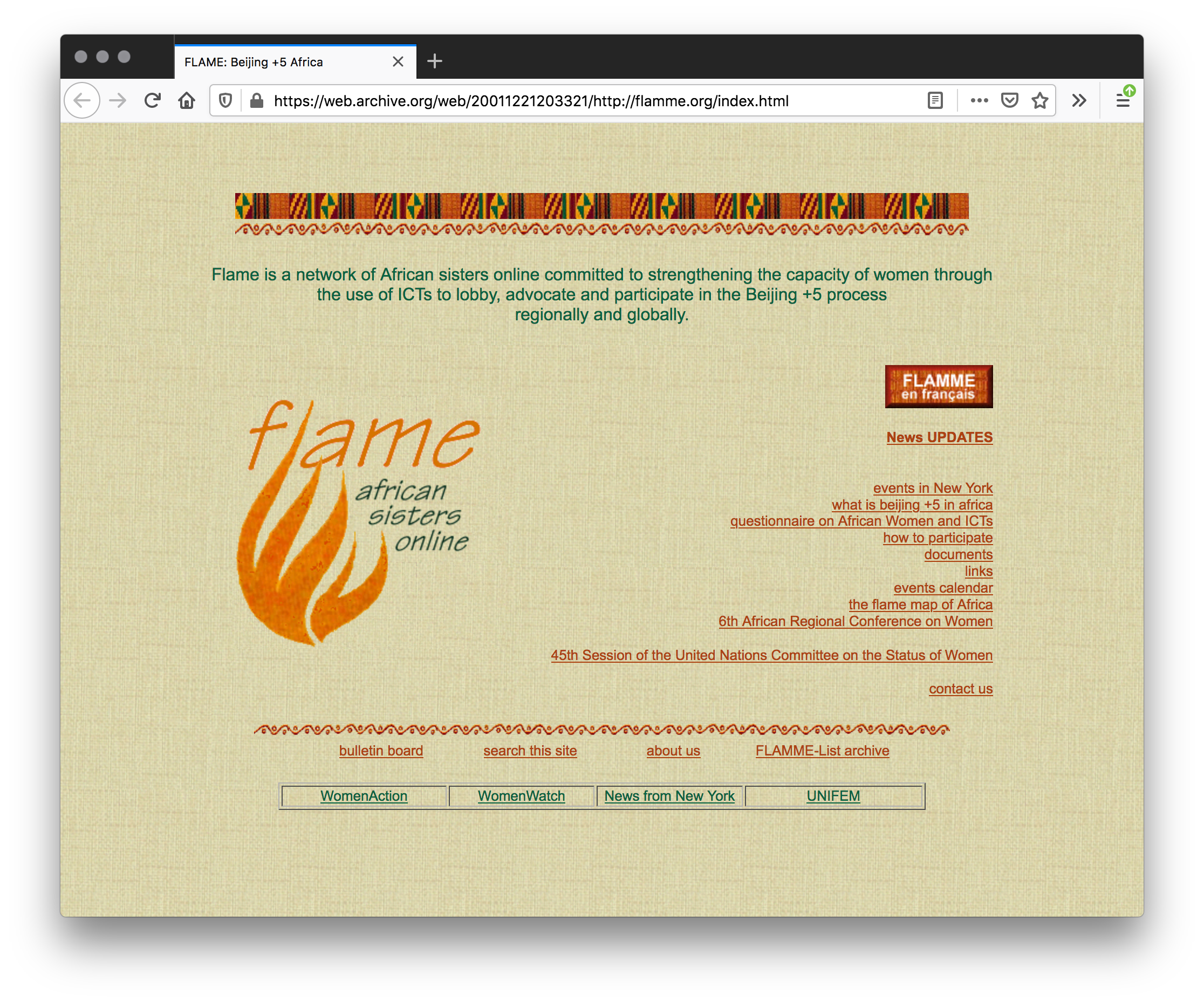
Wayback Machine, December 21, 2001, Screenshot, 2020, Firefox v76.0.1 on Mac OS 10.13.3; https://web.archive.org/web/20011221203321/http://flamme.org/index.html
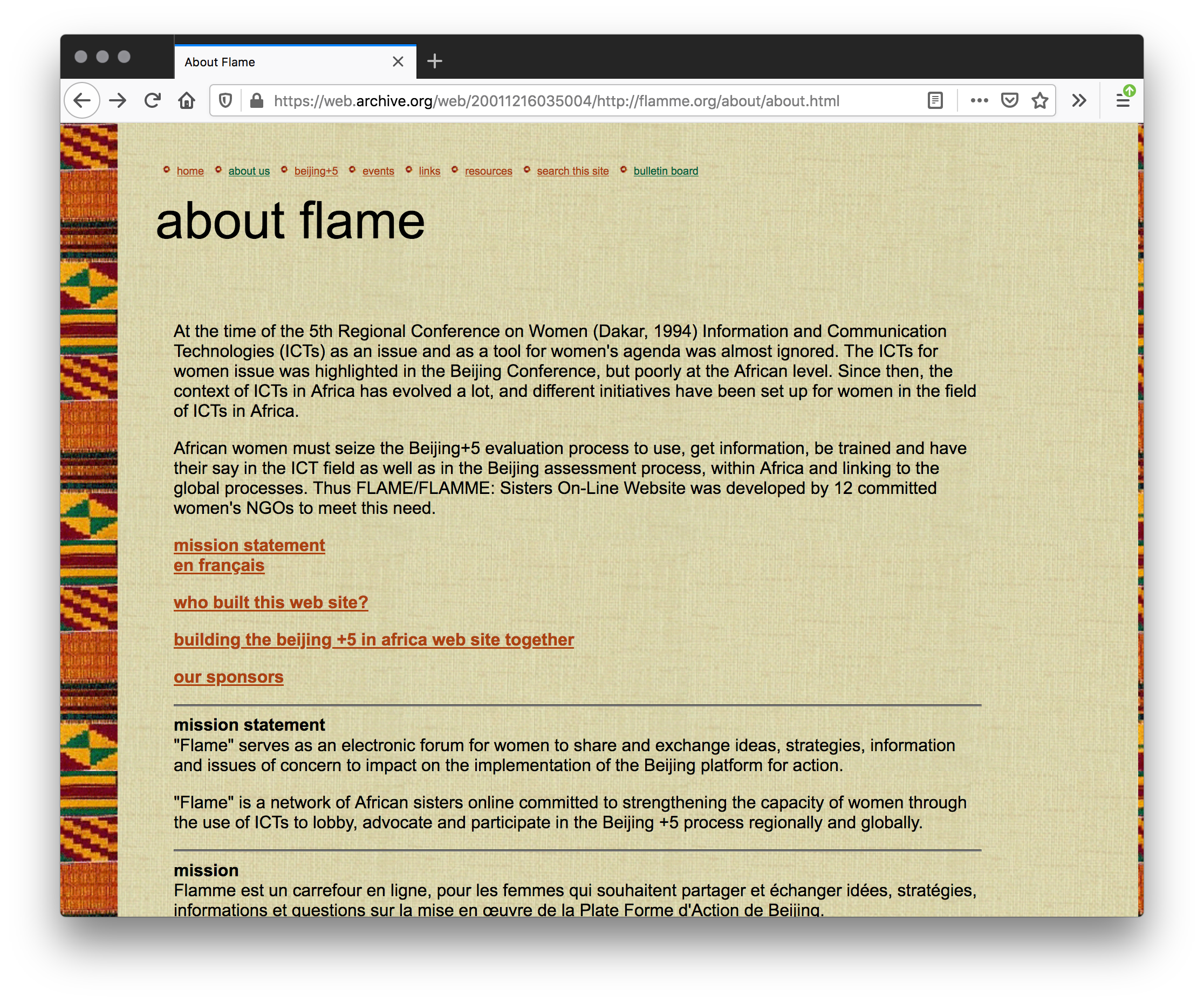
Wayback Machine, December 16, 2001, Screenshot, 2020, Firefox v76.0.1 on Mac OS 10.13.3; https://web.archive.org/web/20011216035004/http://flamme.org/about/about.html
At the time of the 5th Regional Conference on Women (Dakar, 1994) Information and Communication Technologies (ICTs) as an issue and as a tool for women’s agenda was almost ignored. The ICTs for women issue was highlighted in the Beijing Conference, but poorly at the African level. Since then, the context of ICTs in Africa has evolved a lot, and different initiatives have been set up for women in the field of ICTs in Africa. (x) African women must seize the Beijing+5 evaluation process to use, get information, be trained and have their say in the ICT field as well as in the Beijing assessment process, within Africa and linking to the global processes. Thus FLAME/FLAMME: Sisters On-Line Website was developed by 12 committed women’s NGOs to meet this need.
1994, https://web.archive.org/web/20011221203321/http://flamme.org/index.html
Members included Genevieve Bro-Grebe, Dr. Angie Dawa, Juliet Ddungu, Leonor Domingos, Ndey Jobarteh, Sharon Kafwembe Sichilongo, Suko Mdlawuzo, Ndeye Marianne Thioye, Alka Larkan, Lornah Murage, Sara Longwe, Rose Akinyi Okech, Jenny Radloff, and Juliet Were.
Africa
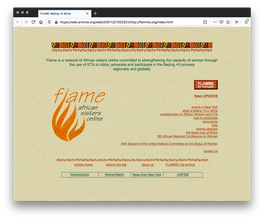
Wayback Machine, December 21, 2001, Screenshot, 2020, Firefox v76.0.1 on Mac OS 10.13.3; https://web.archive.org/web/20011221203321/http://flamme.org/index.html

Wayback Machine, December 16, 2001, Screenshot, 2020, Firefox v76.0.1 on Mac OS 10.13.3; https://web.archive.org/web/20011216035004/http://flamme.org/about/about.html
(32)
1994
Mezangelle
Mez Breeze
+i. re.route. language. via. net.based. mechanisms. that. allow. 4. n.hanced. lateral. signification. or. As.sim][ple][ilation.+
In 1994, Australian artist and poet Mez Breeze began to develop an online language she named Mezangelle. Using programming language and informal speech, Mezangelle rearranges and dissects standard English to create new and unexpected meaning. Mez Breeze’s overall approach to codework—online experimental writing (x) that explores the relationship between machine and human languages—is imbued with a sense of playfulness and creativity. Her Mezangelle poetry has appeared throughout the internet for the last two decades under multiple names and connected to different avatars.
1994, Mez Breeze; excerpt from Rhizome, “Mezangelle,” Net Art Anthology, https://anthology.rhizome.org/mez-breeze
Editor’s Note: Many of the artworks in this index were preserved and presented in the publication Net Art Anthology by Rhizome, a foundational organization in the development and history of contemporary art engaged with digital technologies and the internet. —MS
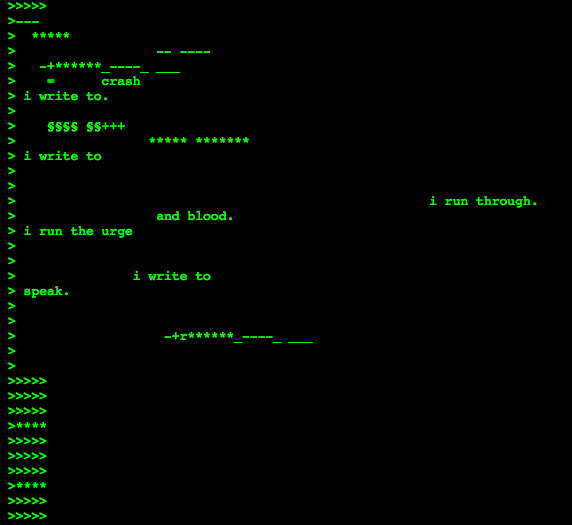
Screenshot of Mez Breeze, 4-7 5-kc5, email from 7-11 email list, May 13, 1998.” image from https://anthology.rhizome.org/mez-breeze
+i. re.route. language. via. net.based. mechanisms. that. allow. 4. n.hanced. lateral. signification. or. As.sim][ple][ilation.+
In 1994, Australian artist and poet Mez Breeze began to develop an online language she named Mezangelle. Using programming language and informal speech, Mezangelle rearranges and dissects standard English to create new and unexpected meaning. Mez Breeze’s overall approach to codework—online experimental writing (x) that explores the relationship between machine and human languages—is imbued with a sense of playfulness and creativity. Her Mezangelle poetry has appeared throughout the internet for the last two decades under multiple names and connected to different avatars.
1994, Mez Breeze; excerpt from Rhizome, “Mezangelle,” Net Art Anthology, https://anthology.rhizome.org/mez-breeze
Editor’s Note: Many of the artworks in this index were preserved and presented in the publication Net Art Anthology by Rhizome, a foundational organization in the development and history of contemporary art engaged with digital technologies and the internet. —MS
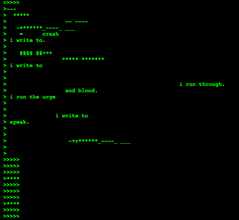
Screenshot of Mez Breeze, 4-7 5-kc5, email from 7-11 email list, May 13, 1998.” image from https://anthology.rhizome.org/mez-breeze
(33)
1994
Cyberskins: Live and Interactive
Buffy Sainte-Marie
On an airplane, my Powerbook is singing to me in Lakota, while the words to the song appear on screen in both Lakota and English.
In the Canadian Rockies, Indians carrying portable computers trudge through a herd of elk and into the Banff Center for the Arts where the “Drum Beats to Drum Bytes” (x) thinktank confronts the reality of online life as it affects Native artists. […]
The digital scene in Indian country (x) at the moment is a microcosm of the way it is most everywhere else, with people at various stages of expertise and enthusiasm going through the big shift. Issues of sovereignty are often the first to come up among Native intellectuals, and the specter of digital colonialism frightens some and challenges others. […] The reality of the situation is that we’re not all dead and stuffed in some museum with the dinosaurs: we are here in this digital age. We have led the pack in a couple of areas (digital music and online art). Although our potential at the moment exceeds the extensiveness of our community computer usage, our projects are already bearing fruit, we expect to prosper and to contribute, and we will defend our data.
1994, Buffy Sainte-Marie, https://web.archive.org/web/20090721112235/http://www.creative-native.com/cybersk.htm
On an airplane, my Powerbook is singing to me in Lakota, while the words to the song appear on screen in both Lakota and English.
In the Canadian Rockies, Indians carrying portable computers trudge through a herd of elk and into the Banff Center for the Arts where the “Drum Beats to Drum Bytes” (x) thinktank confronts the reality of online life as it affects Native artists. […]
The digital scene in Indian country (x) at the moment is a microcosm of the way it is most everywhere else, with people at various stages of expertise and enthusiasm going through the big shift. Issues of sovereignty are often the first to come up among Native intellectuals, and the specter of digital colonialism frightens some and challenges others. […] The reality of the situation is that we’re not all dead and stuffed in some museum with the dinosaurs: we are here in this digital age. We have led the pack in a couple of areas (digital music and online art). Although our potential at the moment exceeds the extensiveness of our community computer usage, our projects are already bearing fruit, we expect to prosper and to contribute, and we will defend our data.
1994, Buffy Sainte-Marie, https://web.archive.org/web/20090721112235/http://www.creative-native.com/cybersk.htm
(34)
1994
Drumbeats to Drumbytes
Loretta Todd, Marjorie Beaucage, Sara Diamond
The gathering brought together 16 Aboriginal (x) resource people from across North America involved in First Peoples’ arts and cultural development, facilitation, production, education, communications and telecommunications network development. The purpose of the gathering was to begin the process of establishing a nation-wide computer based multi-media telecommunications network to serve the communications, information resource, and training and professional development needs of First Peoples (Metis, Inuit, and status and non-status Indian) cultural producers, facilitators and educators working in the fields of our languages, literatures, visual and media arts, performing arts and music, etc.
1994, Loretta Todd, Marjorie Beaucage, and Sara Diamond, organizers (gathering, Banff Centre for Arts, Banff, AB, March 12–15, 1994); excerpt from “Drumbeats to Drumbytes Origins—1994,” http://drumbytes.org/
https://www.are.na/block/8146804
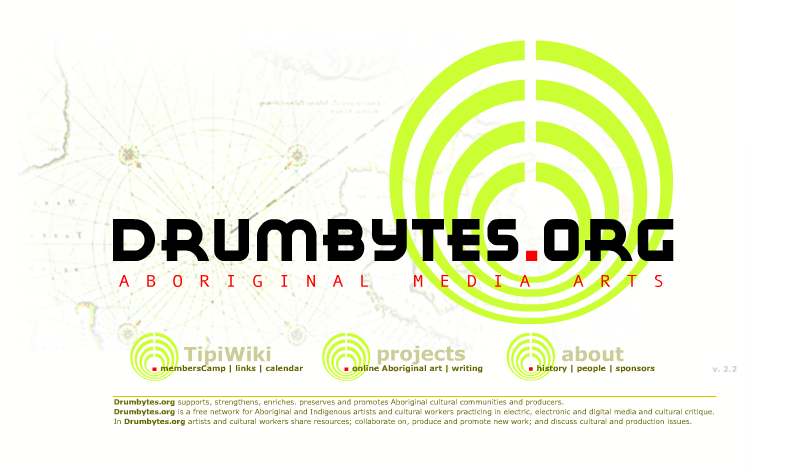
homepage image from http://drumbytes.org/
The gathering brought together 16 Aboriginal (x) resource people from across North America involved in First Peoples’ arts and cultural development, facilitation, production, education, communications and telecommunications network development. The purpose of the gathering was to begin the process of establishing a nation-wide computer based multi-media telecommunications network to serve the communications, information resource, and training and professional development needs of First Peoples (Metis, Inuit, and status and non-status Indian) cultural producers, facilitators and educators working in the fields of our languages, literatures, visual and media arts, performing arts and music, etc.
1994, Loretta Todd, Marjorie Beaucage, and Sara Diamond, organizers (gathering, Banff Centre for Arts, Banff, AB, March 12–15, 1994); excerpt from “Drumbeats to Drumbytes Origins—1994,” http://drumbytes.org/
https://www.are.na/block/8146804
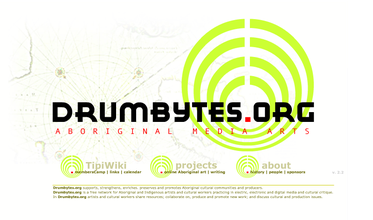
homepage image from http://drumbytes.org/
(35)
1994
Romancing the Anti-Body: Lust and Longing in (Cyber)space
Lynn Hershman Leeson
Plugging into cyberspace requires the creation of a personal mask, which becomes a signature, a thumbprint, and a means of recognition. Masks camouflage the body and in doing so liberate and give voice to virtual selves. As personal truth is released, the fragile and tenuous face of vulnerability is protected.
One of the more diabolical elements of entering “Virtual Reality” is that people can only recognize each other when they are electronically disguised. Truth is precisely based on the inauthentic. Masks become part of the grammar. It is the syntax of the culture of computer-mediated identity (x) which, by the way, can include simultaneous multiple identities, or identities that abridge and dislocate gender and age. Identity is the first thing you create when you log on to a computer service. […] Communities are defined by software and hardware access. Anatomy can be readily reconstituted.
1994, Lynn Hershman Leeson, in Clicking In: Hot Links to a Digital Culture, ed. Lynn Hershman Leeson (Seattle: Bay Press, 1996), pp. 325–337; excerpt p. 325
https://www.lynnhershman.com/wp-content/uploads/2016/06/Romancing-the-Anti-Body.pdf
Plugging into cyberspace requires the creation of a personal mask, which becomes a signature, a thumbprint, and a means of recognition. Masks camouflage the body and in doing so liberate and give voice to virtual selves. As personal truth is released, the fragile and tenuous face of vulnerability is protected.
One of the more diabolical elements of entering “Virtual Reality” is that people can only recognize each other when they are electronically disguised. Truth is precisely based on the inauthentic. Masks become part of the grammar. It is the syntax of the culture of computer-mediated identity (x) which, by the way, can include simultaneous multiple identities, or identities that abridge and dislocate gender and age. Identity is the first thing you create when you log on to a computer service. […] Communities are defined by software and hardware access. Anatomy can be readily reconstituted.
1994, Lynn Hershman Leeson, in Clicking In: Hot Links to a Digital Culture, ed. Lynn Hershman Leeson (Seattle: Bay Press, 1996), pp. 325–337; excerpt p. 325
https://www.lynnhershman.com/wp-content/uploads/2016/06/Romancing-the-Anti-Body.pdf
(36)
1995
Womenznet
Spider Redgold
Womenznet on Pegasus Networks provides access to activists using computer networks for information sharing, broadcast and collaboration. (x) Women are encouraged to share their ideas, access information and promote their own work and interests. Who can benefit: women’s groups and networks, women’s health centers, girls schools, professional and business women, country women providing home education, women in technology. […] Women’s conferences accessible on Pegasus Networks including some APC’s conferences. Pegasus Networks will set up public womenZnet conferences free of charge, and encourages the setting up of conferences for specific purposes and discussions.
1995, Spider Redgold, https://web.archive.org/web/19961129042432/http://www.womenz.net.au/about.html
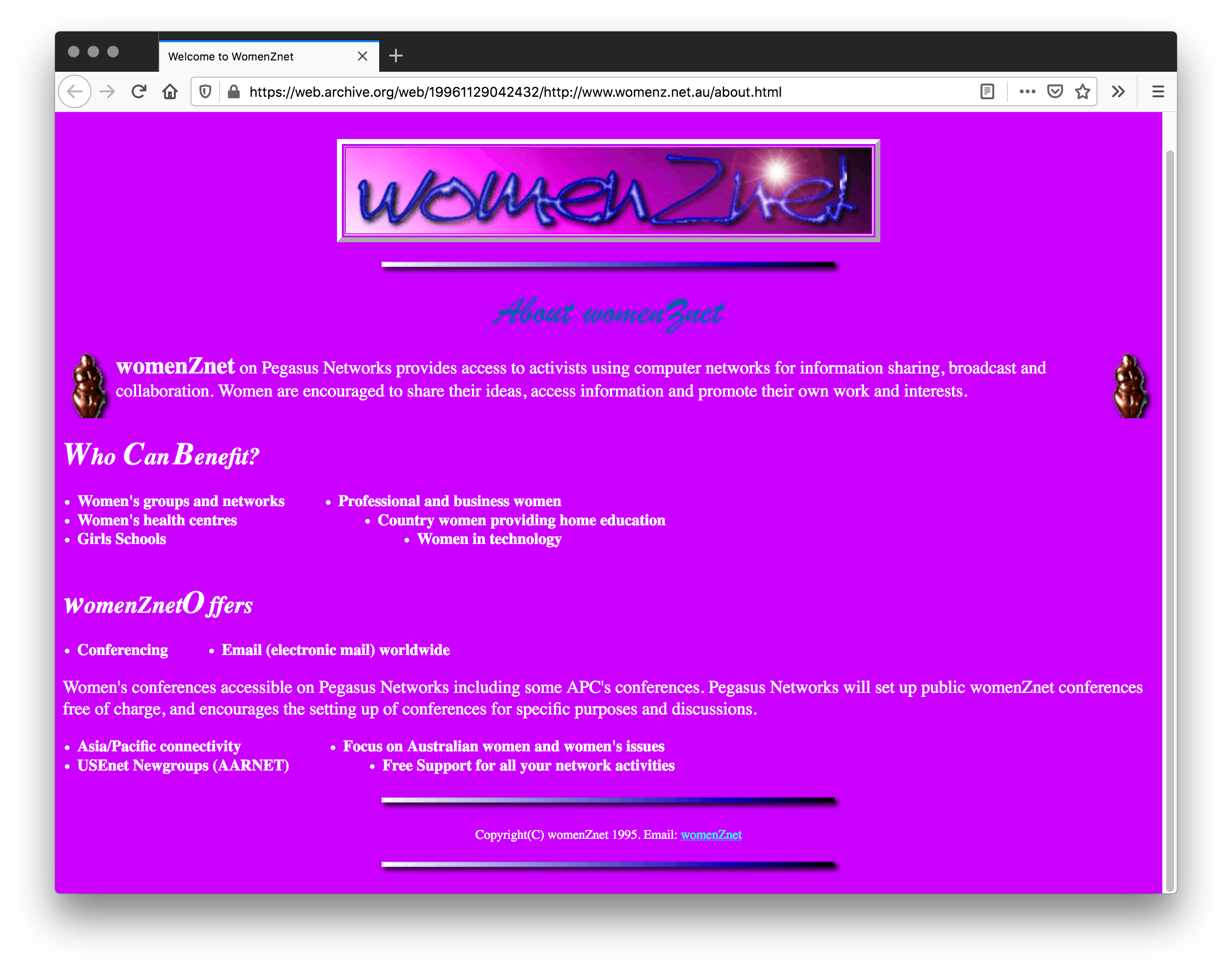
Wayback Machine, November 29, 1996; Screenshot, 2020, Firefox v76.0.1 on Mac OS 10.13.3; https://web.archive.org/web/19961129042432/http://www.womenz.net.au/about.html
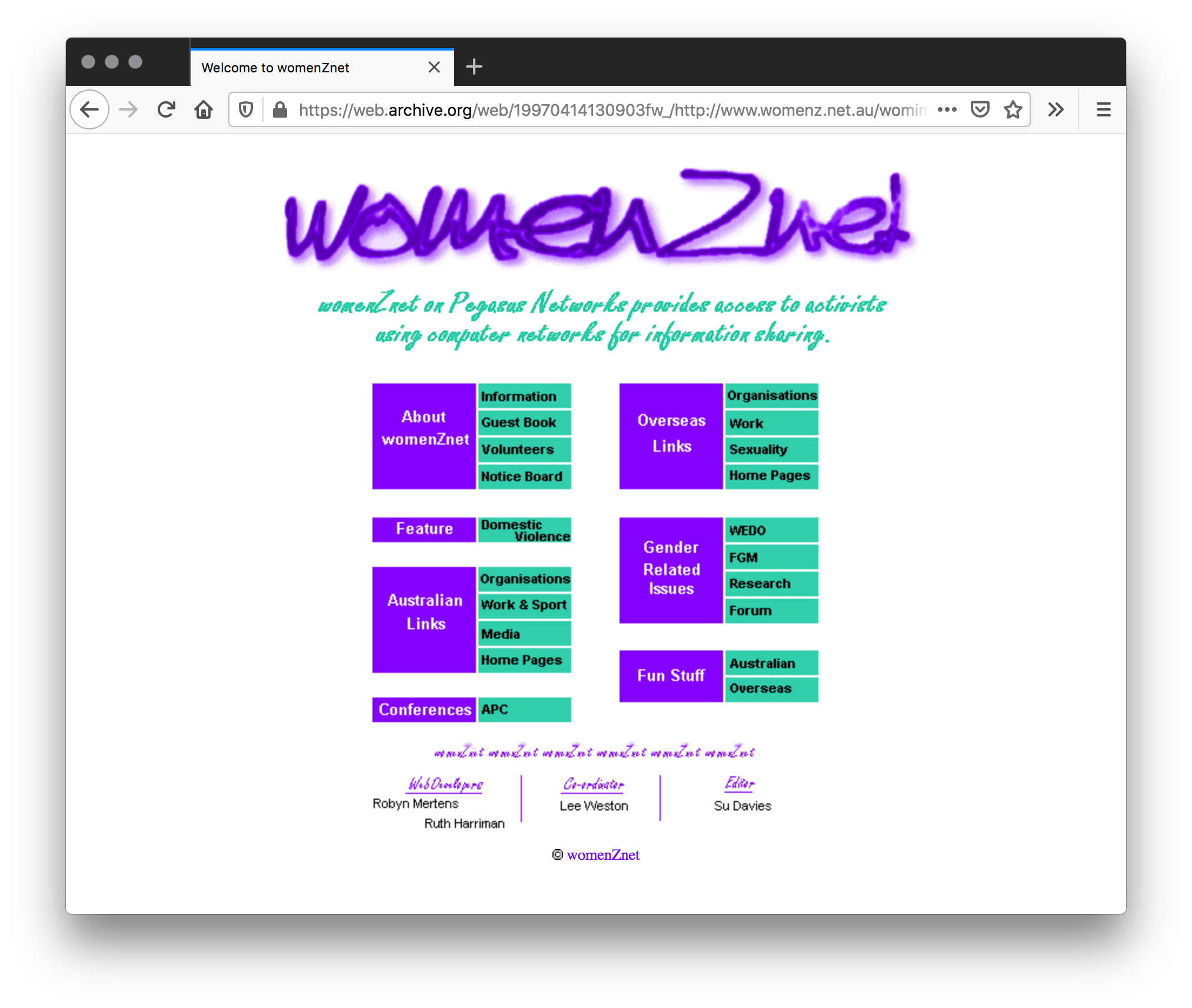
Wayback Machine, April 14, 1997; Screenshot, 2020, Firefox v76.0.1 on Mac OS 10.13.3; https://web.archive.org/web/19970414130903fw_/http://www.womenz.net.au/womimage.html

Logo from Womenznet website, Wayback Machine, February 8, 1998, https://web.archive.org/web/19980208101325/http://www.womenz.net.au:80/

Graphic from Womenznet website, Wayback Machine, February 8, 1998, https://web.archive.org/web/19980208101325/http://www.womenz.net.au:80/

Artifact from Womenznet website, Wayback Machine, February 8, 1998, https://web.archive.org/web/19980208101325/http://www.womenz.net.au:80/
Womenznet on Pegasus Networks provides access to activists using computer networks for information sharing, broadcast and collaboration. (x) Women are encouraged to share their ideas, access information and promote their own work and interests. Who can benefit: women’s groups and networks, women’s health centers, girls schools, professional and business women, country women providing home education, women in technology. […] Women’s conferences accessible on Pegasus Networks including some APC’s conferences. Pegasus Networks will set up public womenZnet conferences free of charge, and encourages the setting up of conferences for specific purposes and discussions.
1995, Spider Redgold, https://web.archive.org/web/19961129042432/http://www.womenz.net.au/about.html
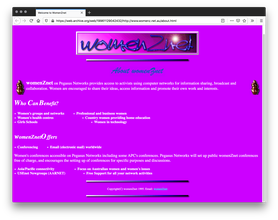
Wayback Machine, November 29, 1996; Screenshot, 2020, Firefox v76.0.1 on Mac OS 10.13.3; https://web.archive.org/web/19961129042432/http://www.womenz.net.au/about.html
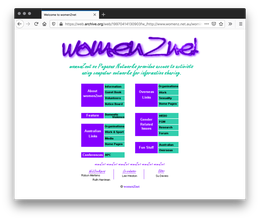
Wayback Machine, April 14, 1997; Screenshot, 2020, Firefox v76.0.1 on Mac OS 10.13.3; https://web.archive.org/web/19970414130903fw_/http://www.womenz.net.au/womimage.html

Logo from Womenznet website, Wayback Machine, February 8, 1998, https://web.archive.org/web/19980208101325/http://www.womenz.net.au:80/

Graphic from Womenznet website, Wayback Machine, February 8, 1998, https://web.archive.org/web/19980208101325/http://www.womenz.net.au:80/

Artifact from Womenznet website, Wayback Machine, February 8, 1998, https://web.archive.org/web/19980208101325/http://www.womenz.net.au:80/
(37)
1995
Technologies of the Gendered Body: Reading Cyborg Women
Anne Balsamo
The cyborg image can be read in two ways: as a coupling between a human being and an electronic mechanical apparatus, or as the identity of organisms embedded in a cybernetic information system. In the first sense, the coupling between human and machine is located within the body itself—the boundary between the material body and the artificial machine is surgically redrawn. In the second sense, however, the boundary between the body and technology is socially inscribed, (x) at once indistinct and arbitrary, but no less functional. A cyborg body, as Gregory Bateson might argue, “is not bounded by the skin but includes all external pathways along which information can travel.” […] Cyborg bodies are definitionally transgressive of a dominant culture order, not so much because of their “constructed” nature, but rather because of the indeterminacy of their hybrid design.
1996, Anne Balsamo (Durham: Duke University Press, 1996); excerpt p. 11
https://www.dukeupress.edu/Technologies-of-the-Gendered-Body/
The cyborg image can be read in two ways: as a coupling between a human being and an electronic mechanical apparatus, or as the identity of organisms embedded in a cybernetic information system. In the first sense, the coupling between human and machine is located within the body itself—the boundary between the material body and the artificial machine is surgically redrawn. In the second sense, however, the boundary between the body and technology is socially inscribed, (x) at once indistinct and arbitrary, but no less functional. A cyborg body, as Gregory Bateson might argue, “is not bounded by the skin but includes all external pathways along which information can travel.” […] Cyborg bodies are definitionally transgressive of a dominant culture order, not so much because of their “constructed” nature, but rather because of the indeterminacy of their hybrid design.
1996, Anne Balsamo (Durham: Duke University Press, 1996); excerpt p. 11
https://www.dukeupress.edu/Technologies-of-the-Gendered-Body/
(38)
1995
Cyborg: Engineering the Body Electric
Diane Greco
Part human and part machine, the cyborg is a familiar figure in cyberpunk science fiction. But this figure looms ever larger—as metaphor and as reality—in all our lives. Today, cyborgs are real; in cyberspace, we are all cyborgs. (x) Diane Greco explores the significance of the cyborg in 20th century writing from Thomas Pynchon and William Gibson to Haraway and Derrida. The cyborg is more than just an interesting fiction; Cyborg: Engineering The Body Electric explores cyborg’s impact on political action and personal identity. After reading Cyborg, you’ll never again look at your body (or someone else’s) quite the same way. If cyborgs know about anything, they know about parts. Spare parts, parts and wholes, prostheses, replacements, enhancements. How do you make sense of all these pieces? After the disaster, when things fall apart, cyborgs know how to stitch themselves back together.
1995, Diane Greco, Eastgate Systems, http://www.eastgate.com/catalog/Cyborg.html
Editor’s Note: In the American Book Review, N. Katherine Hayles describes the floppy disk publication as one that “makes use of hypertext technology to create a cyborg text.” —MS
Part human and part machine, the cyborg is a familiar figure in cyberpunk science fiction. But this figure looms ever larger—as metaphor and as reality—in all our lives. Today, cyborgs are real; in cyberspace, we are all cyborgs. (x) Diane Greco explores the significance of the cyborg in 20th century writing from Thomas Pynchon and William Gibson to Haraway and Derrida. The cyborg is more than just an interesting fiction; Cyborg: Engineering The Body Electric explores cyborg’s impact on political action and personal identity. After reading Cyborg, you’ll never again look at your body (or someone else’s) quite the same way. If cyborgs know about anything, they know about parts. Spare parts, parts and wholes, prostheses, replacements, enhancements. How do you make sense of all these pieces? After the disaster, when things fall apart, cyborgs know how to stitch themselves back together.
1995, Diane Greco, Eastgate Systems, http://www.eastgate.com/catalog/Cyborg.html
Editor’s Note: In the American Book Review, N. Katherine Hayles describes the floppy disk publication as one that “makes use of hypertext technology to create a cyborg text.” —MS
(39)
1995
Webgrrls International
Cybergrrl
Webgrrls is a real-world, face-to-face networking group for women in and interested in new media. Chapters are forming in cities all around the world to provide a forum for women to exchange information, give job and business leads, learn about new technologies, mentor, intern, train and more! […] We also hold events to show girls how to use the Internet and the World Wide Web. We reach out to community groups (x) that work with girls and bring them to a computer cafe called “Cyberfields.” Each girl is teamed up with a Webgrrl so they learn about the Internet from a woman who loves computers. Not only do they gain confidence from being exposed to technology in a friendly way, they have a woman mentor, someone to look up to and someone who shows them that computers aren‘t just for the boys.
1995, Cybergrrl, https://web.archive.org/web/19990202165143/http://www.webgrrls.com:80/ny/index.html

Logo from Wayback Machine, February 2, 1999; Screenshot, 2020, Firefox v76.0.1 on Mac OS 10.13.3; https://web.archive.org/web/19990202165143/http://www.webgrrls.com:80/ny/index.html

Banner advertisement from Wayback Machine, December 6, 1998; Screenshot, 2020, Firefox v76.0.1 on Mac OS 10.13.3; https://web.archive.org/web/19981206183024/http://www.webgrrls.com/gather.html
Webgrrls is a real-world, face-to-face networking group for women in and interested in new media. Chapters are forming in cities all around the world to provide a forum for women to exchange information, give job and business leads, learn about new technologies, mentor, intern, train and more! […] We also hold events to show girls how to use the Internet and the World Wide Web. We reach out to community groups (x) that work with girls and bring them to a computer cafe called “Cyberfields.” Each girl is teamed up with a Webgrrl so they learn about the Internet from a woman who loves computers. Not only do they gain confidence from being exposed to technology in a friendly way, they have a woman mentor, someone to look up to and someone who shows them that computers aren‘t just for the boys.
1995, Cybergrrl, https://web.archive.org/web/19990202165143/http://www.webgrrls.com:80/ny/index.html

Logo from Wayback Machine, February 2, 1999; Screenshot, 2020, Firefox v76.0.1 on Mac OS 10.13.3; https://web.archive.org/web/19990202165143/http://www.webgrrls.com:80/ny/index.html

Banner advertisement from Wayback Machine, December 6, 1998; Screenshot, 2020, Firefox v76.0.1 on Mac OS 10.13.3; https://web.archive.org/web/19981206183024/http://www.webgrrls.com/gather.html
(40)
1995
EROS INterACTive
JoAnn Gillerman, Rob Terry
EROS INterACTive is an interactive multimedia register that I produced with Rob Terry. (x) Soft whisperings and seductive images entice the viewer—in real time—to record their comments and listen to others’ comments on eroticism and interactivity. EROS INterACTive is an interactive real-time register/bulletin board designed to solicit 10-second comments in real-time (“Record”), let participants listen to their own comments and the comments of the previous 35 people (“Playback”), as well as view/listen to pre-selected portrait-segments on the EROS Screen. The highly resolute Silicon Graphics monitor with sensuous imagery whispers constantly and seductively to encourage interactions. As one strokes an on-screen body, it may whisper, “Hello, come talk to me, tell me what you are thinking. I’ll tell you what I’m thinking …”
1995, JoAnn Gillerman and Rob Terry; excerpt from JoAnn Gillerman, “The Sun Drops Its Torch; EROS INterACTive; AnArchy Partycam,” Leonardo On-Line: Words on Works, https://www.leonardo.info/isast/wow/gill-wow294.html
https://www.vipervertex.com/vv-orig/leonardo.html
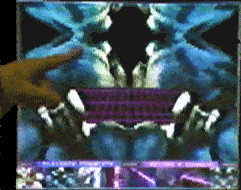
Image from ViperVertex, 1995, https://www.vipervertex.com/Exhibits/exhibit_travel-eros.htm
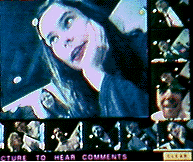
Image from ViperVertex, 1995, https://www.vipervertex.com/Exhibits/exhibit_travel-eros.htm
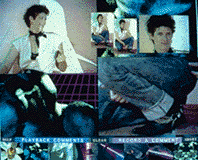
Image from ViperVertex, 1995, https://www.vipervertex.com/Exhibits/exhibit_travel-eros.htm
EROS INterACTive is an interactive multimedia register that I produced with Rob Terry. (x) Soft whisperings and seductive images entice the viewer—in real time—to record their comments and listen to others’ comments on eroticism and interactivity. EROS INterACTive is an interactive real-time register/bulletin board designed to solicit 10-second comments in real-time (“Record”), let participants listen to their own comments and the comments of the previous 35 people (“Playback”), as well as view/listen to pre-selected portrait-segments on the EROS Screen. The highly resolute Silicon Graphics monitor with sensuous imagery whispers constantly and seductively to encourage interactions. As one strokes an on-screen body, it may whisper, “Hello, come talk to me, tell me what you are thinking. I’ll tell you what I’m thinking …”
1995, JoAnn Gillerman and Rob Terry; excerpt from JoAnn Gillerman, “The Sun Drops Its Torch; EROS INterACTive; AnArchy Partycam,” Leonardo On-Line: Words on Works, https://www.leonardo.info/isast/wow/gill-wow294.html
https://www.vipervertex.com/vv-orig/leonardo.html
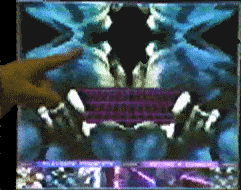
Image from ViperVertex, 1995, https://www.vipervertex.com/Exhibits/exhibit_travel-eros.htm
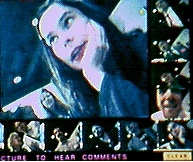
Image from ViperVertex, 1995, https://www.vipervertex.com/Exhibits/exhibit_travel-eros.htm
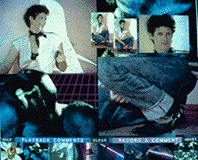
Image from ViperVertex, 1995, https://www.vipervertex.com/Exhibits/exhibit_travel-eros.htm
(41)
1995
AnArchy PARTYCAM
JoAnn Gillerman, Rob Terry
AnArchy PARTYCAM is comprised of an interactive performance and two costumes that I designed with Rob Terry. One costume has a camera that “sees”; the other costume projects the camera’s display. Both costumes can act separately, but for the display to work the cooperation of both participants is required. Voluntary cooperation and collaboration inspire the human interfaces (x) inside the costumes to combine the elements in a coordinated effort of spontaneous interaction. The viewer/participant becomes the display and object of curiosity, bridging gaps between “in” and “out” and “us” and “them.”
1995, JoAnn Gillerman and Rob Terry; excerpt from JoAnn Gillerman, “The Sun Drops Its Torch; EROS INterACTive; AnArchy Partycam,” Leonardo On-Line: Words on Works, https://www.leonardo.info/isast/wow/gill-wow294.html
https://www.leonardo.info/isast/wow/gill-wow294.html
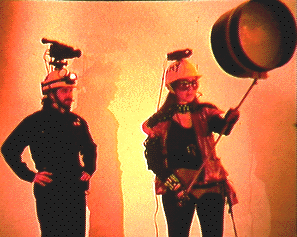
Image from ViperVertex, 1995, https://www.vipervertex.com/About/art/AAPartycam_flyer.html
AnArchy PARTYCAM is comprised of an interactive performance and two costumes that I designed with Rob Terry. One costume has a camera that “sees”; the other costume projects the camera’s display. Both costumes can act separately, but for the display to work the cooperation of both participants is required. Voluntary cooperation and collaboration inspire the human interfaces (x) inside the costumes to combine the elements in a coordinated effort of spontaneous interaction. The viewer/participant becomes the display and object of curiosity, bridging gaps between “in” and “out” and “us” and “them.”
1995, JoAnn Gillerman and Rob Terry; excerpt from JoAnn Gillerman, “The Sun Drops Its Torch; EROS INterACTive; AnArchy Partycam,” Leonardo On-Line: Words on Works, https://www.leonardo.info/isast/wow/gill-wow294.html
https://www.leonardo.info/isast/wow/gill-wow294.html
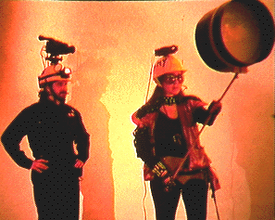
Image from ViperVertex, 1995, https://www.vipervertex.com/About/art/AAPartycam_flyer.html
(42)
1995–
1998
Tillie and CyberRoberta
Lynn Hershman Leeson
CyberRoberta was conceived simultaneously with “Tillie, the Telerobotic Doll.” When they are exhibited together, each is programmed to pirate the others’ information, blurring their identities. “Tillie, the Telerobotic Doll” and “CyberRoberta” are constructed so that cameras replace the dolls’ eyes: a video camera in the left eye, a webcam in the right eye. By clicking on the “eye con” on the right of each doll’s internet image, users can telerobotically turn that doll’s head 180 degrees, allowing visitors to her web site to survey the room she is in. Viewers in the physical space of the gallery can see themselves captured on the small monitor in Tillie’s environment via a mirror placed in front of her. They also have the capability to send images back through the internet to the web page. (x) The color video camera in the left eye records exactly what is in front of the doll. By looking at the world through the eyes of Tillie, viewers become not only voyeurs but also virtual cyborgs, because they use her eyes as a vehicle for their own remote and extended vision. Tillie’s recorded mirror images the face and becomes a mask for multiple expressions of identity capable only through global connectivity.
1995, Lynn Hershman Leeson; excerpt from Lynn Hershman Leeson, “Tillie and CyberRoberta,” https://www.lynnhershman.com/tillie-and-cyberroberta/

“CybeRoberta's page, courtesy of the artist.” Image from Rhizome Net Art Anthology, “The Dollie Clone Series”, https://anthology.rhizome.org/dollie-clones

Image from Rhizome Net Art Anthology, “The Dollie Clone Series”, https://anthology.rhizome.org/dollie-clones

“Looking at Lynn Hershman Leeson through CybeRoberta's eyes, from the exhibition "Moments: A History of Performance in 10 Acts," ZKM Karslruhe, 2011, courtesy of the artist.” Image from Rhizome Net Art Anthology, “The Dollie Clone Series”, https://anthology.rhizome.org/dollie-clones
CyberRoberta was conceived simultaneously with “Tillie, the Telerobotic Doll.” When they are exhibited together, each is programmed to pirate the others’ information, blurring their identities. “Tillie, the Telerobotic Doll” and “CyberRoberta” are constructed so that cameras replace the dolls’ eyes: a video camera in the left eye, a webcam in the right eye. By clicking on the “eye con” on the right of each doll’s internet image, users can telerobotically turn that doll’s head 180 degrees, allowing visitors to her web site to survey the room she is in. Viewers in the physical space of the gallery can see themselves captured on the small monitor in Tillie’s environment via a mirror placed in front of her. They also have the capability to send images back through the internet to the web page. (x) The color video camera in the left eye records exactly what is in front of the doll. By looking at the world through the eyes of Tillie, viewers become not only voyeurs but also virtual cyborgs, because they use her eyes as a vehicle for their own remote and extended vision. Tillie’s recorded mirror images the face and becomes a mask for multiple expressions of identity capable only through global connectivity.
1995, Lynn Hershman Leeson; excerpt from Lynn Hershman Leeson, “Tillie and CyberRoberta,” https://www.lynnhershman.com/tillie-and-cyberroberta/
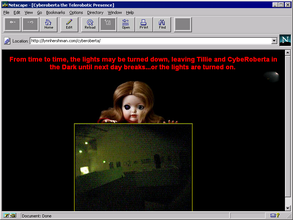
“CybeRoberta's page, courtesy of the artist.” Image from Rhizome Net Art Anthology, “The Dollie Clone Series”, https://anthology.rhizome.org/dollie-clones

Image from Rhizome Net Art Anthology, “The Dollie Clone Series”, https://anthology.rhizome.org/dollie-clones
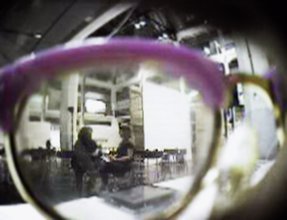
“Looking at Lynn Hershman Leeson through CybeRoberta's eyes, from the exhibition "Moments: A History of Performance in 10 Acts," ZKM Karslruhe, 2011, courtesy of the artist.” Image from Rhizome Net Art Anthology, “The Dollie Clone Series”, https://anthology.rhizome.org/dollie-clones
(43)
1995
Cyberflesh Girlmonster
Linda Dement
At the Adelaide Festival, about 30 women donated body parts by scanning their chosen flesh and digitally recording sound. From these, conglomerate bodies (x) were created, animated and made interactive. When a viewer clicks on one of these monsters, the words attached to that body part could be heard or seen, another monster may appear, a digital video could play, a story or biological information about the physical state described by the story, may be displayed. Cyberflesh Girlmonster is a macabre comedy of monstrous femininity, of revenge, desire and violence.
1995, Linda Dement, http://www.lindadement.com/cyberflesh-girlmonster.htm
At the Adelaide Festival, about 30 women donated body parts by scanning their chosen flesh and digitally recording sound. From these, conglomerate bodies (x) were created, animated and made interactive. When a viewer clicks on one of these monsters, the words attached to that body part could be heard or seen, another monster may appear, a digital video could play, a story or biological information about the physical state described by the story, may be displayed. Cyberflesh Girlmonster is a macabre comedy of monstrous femininity, of revenge, desire and violence.
1995, Linda Dement, http://www.lindadement.com/cyberflesh-girlmonster.htm
(44)
1995
The War of Desire and Technology at the Close of the Mechanical Age
Allucquère Rosanne Stone
I have bad history: I am a person who fell in love with her own prostheses. Not once, but twice. Then I fell in love with somebody else’s prosthesis. […] We were looking for one of the hot spots […] Hooked on technology. (x) I could take a couple of coils of wire and a hunk of galena and send a whole part of myself out into the ether. An extension of my will, my instrumentality … That’s a prosthesis, all right.
The second time […] I stood on tiptoe, my nose just clearing the top of the console […] Knobs and switches from hell, all the way to the horizon… there was something about that vast forest of controls that suggested the same breath of exotic worlds […] I was hooked again. Hook on even bigger technology, on another extension of my instrumentality. I […] could at last begin on my life’s path of learning how to make people laugh, cry, and throw up in dark rooms. And I hadn’t even heard it turned on.
1995, Allucquère Rosanne Stone (Cambridge, MA: MIT Press, 1995); excerpt pp. 3–4
https://mitpress.mit.edu/books/war-desire-and-technology-close-mechanical-age
I have bad history: I am a person who fell in love with her own prostheses. Not once, but twice. Then I fell in love with somebody else’s prosthesis. […] We were looking for one of the hot spots […] Hooked on technology. (x) I could take a couple of coils of wire and a hunk of galena and send a whole part of myself out into the ether. An extension of my will, my instrumentality … That’s a prosthesis, all right.
The second time […] I stood on tiptoe, my nose just clearing the top of the console […] Knobs and switches from hell, all the way to the horizon… there was something about that vast forest of controls that suggested the same breath of exotic worlds […] I was hooked again. Hook on even bigger technology, on another extension of my instrumentality. I […] could at last begin on my life’s path of learning how to make people laugh, cry, and throw up in dark rooms. And I hadn’t even heard it turned on.
1995, Allucquère Rosanne Stone (Cambridge, MA: MIT Press, 1995); excerpt pp. 3–4
https://mitpress.mit.edu/books/war-desire-and-technology-close-mechanical-age
(45)
1995
Race In/For Cyberspace: Identity Tourism and Racial Passing on the Internet
Lisa Nakamura
Players who choose to perform this type of racial play are almost always white, and their appropriation of stereotyped male Asiatic samurai figures allows them to indulge in a dream of crossing over racial boundaries temporarily and recreationally. (x) […] Thus, the Orient is brought into the discourse, but only as a token or “type.” The idea of a non-stereotyped Asian male identity is so seldom enacted in LambdaMOO that its absence can only be read as a symptom of suppression.
Tourism is a particularly apt metaphor to describe the activity of racial identity appropriation, or “passing” in cyberspace. The activity of “surfing,” (an activity already associated with tourism in the mind of most Americans) the Internet not only reinforces the idea that cyberspace is not only a place where travel and mobility are featured attractions, but also figures it as a form of travel which is inherently recreational, exotic, and exciting, like surfing. (x) The choice to enact oneself as a samurai warrior in LambdaMOO constitutes a form of identity tourism which allows a player to appropriate an Asian racial identity without any of the risks associated with being a racial minority in real life.
1995, Lisa Nakamura, Works and Days 13, nos. 1–2 (1995): pp. 181–193; excerpt p. 181
http://faculty.humanities.uci.edu/poster/syllabi/readings/nakamura.html https://www.are.na/block/7798323
Players who choose to perform this type of racial play are almost always white, and their appropriation of stereotyped male Asiatic samurai figures allows them to indulge in a dream of crossing over racial boundaries temporarily and recreationally. (x) […] Thus, the Orient is brought into the discourse, but only as a token or “type.” The idea of a non-stereotyped Asian male identity is so seldom enacted in LambdaMOO that its absence can only be read as a symptom of suppression.
Tourism is a particularly apt metaphor to describe the activity of racial identity appropriation, or “passing” in cyberspace. The activity of “surfing,” (an activity already associated with tourism in the mind of most Americans) the Internet not only reinforces the idea that cyberspace is not only a place where travel and mobility are featured attractions, but also figures it as a form of travel which is inherently recreational, exotic, and exciting, like surfing. (x) The choice to enact oneself as a samurai warrior in LambdaMOO constitutes a form of identity tourism which allows a player to appropriate an Asian racial identity without any of the risks associated with being a racial minority in real life.
1995, Lisa Nakamura, Works and Days 13, nos. 1–2 (1995): pp. 181–193; excerpt p. 181
http://faculty.humanities.uci.edu/poster/syllabi/readings/nakamura.html https://www.are.na/block/7798323
(46)
1995
fight
Melinda Rackham
… she who lurks beneath; the libertine, the whore, the hysteric, the ugly, the diseased, the monstrous, the villainess, the murderess, the mutilator, the evil twin. she is there; feeding, nurturing, supporting, encouraging the beautiful one, the successful one, the good one, the loved one, the surface dweller. they can not breathe in each others domain, (x) both would suffocate, atrophy, diminish, shrivel, die. they were joined through the mirror, but its shattering shards severed the binding membrane. now they circle the other, enemies, dancing boxers, predators calculating the attack, hypnotized by sparkling beads of sweat, the soft thud of flesh to flesh. (x) the body is torn apart by its own momentum, pain unrecognizable as a morphia of pleasure, hyper stimulated by the smell, the sight of warm sticky blood, the splitting surface, the swoon of ecstasy. adrenal exhaustion. death will turn them into lovers, burdened by the festering demands of romance. hot glued at the cunt, they retire to lick their wounds, quietly hibernating, seamlessly mutating, rationally evolving, straining for connection …
1995, Melinda Rackham, https://subtle.net/wwwo/fight.html
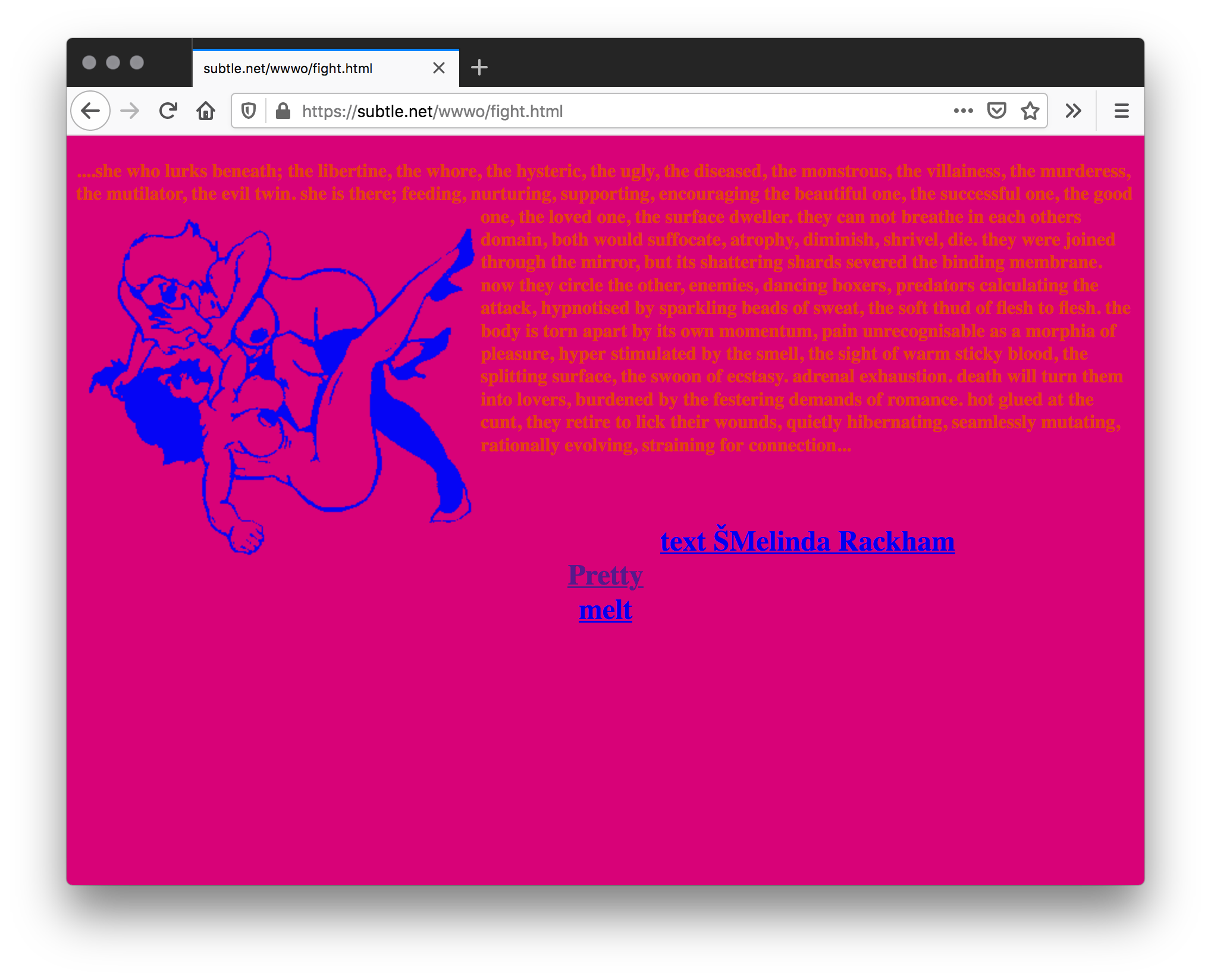
Screenshot, 2020, Firefox v76.0.1 on Mac OS 10.13.3; https://subtle.net/wwwo/fight.html

artifact from https://subtle.net/wwwo/fight.html
… she who lurks beneath; the libertine, the whore, the hysteric, the ugly, the diseased, the monstrous, the villainess, the murderess, the mutilator, the evil twin. she is there; feeding, nurturing, supporting, encouraging the beautiful one, the successful one, the good one, the loved one, the surface dweller. they can not breathe in each others domain, (x) both would suffocate, atrophy, diminish, shrivel, die. they were joined through the mirror, but its shattering shards severed the binding membrane. now they circle the other, enemies, dancing boxers, predators calculating the attack, hypnotized by sparkling beads of sweat, the soft thud of flesh to flesh. (x) the body is torn apart by its own momentum, pain unrecognizable as a morphia of pleasure, hyper stimulated by the smell, the sight of warm sticky blood, the splitting surface, the swoon of ecstasy. adrenal exhaustion. death will turn them into lovers, burdened by the festering demands of romance. hot glued at the cunt, they retire to lick their wounds, quietly hibernating, seamlessly mutating, rationally evolving, straining for connection …
1995, Melinda Rackham, https://subtle.net/wwwo/fight.html
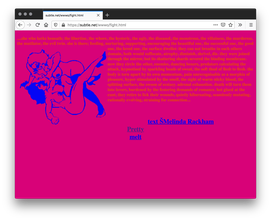
Screenshot, 2020, Firefox v76.0.1 on Mac OS 10.13.3; https://subtle.net/wwwo/fight.html
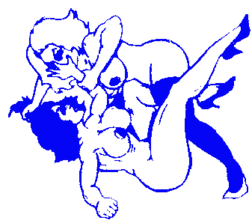
artifact from https://subtle.net/wwwo/fight.html
(47)
1995
On the Shores of Cyberspace
Essex Hemphill
I was counting T-cells on the shores of cyberspace and feeling some despair … I stand at the threshold of cyberspace and wonder, is it possible that I am unwelcome here, too? Will I be allowed to construct a virtual reality that empowers me? Can invisible men see their own reflections? I’m carrying trauma into cyberspace—violent gestures, a fractured soul, short fuses, dreams of revenge … (x) All this confusion is accompanying me into cyberspace; every indignity and humiliation, every anger and suspicion.
1995, Essex Hemphill (text produced for Black Nations / Queer Nations? conference, New York, NY, March 9–11, 1995)
https://www.youtube.com/watch?v=9NU9Rv12Fjo&list=PL81ejA_a1C22WlnQf2HBL8Qf5CEcXGVjG https://www.centerforthehumanities.org/distributaries/queer-circuits-and-breaking-into-history
I was counting T-cells on the shores of cyberspace and feeling some despair … I stand at the threshold of cyberspace and wonder, is it possible that I am unwelcome here, too? Will I be allowed to construct a virtual reality that empowers me? Can invisible men see their own reflections? I’m carrying trauma into cyberspace—violent gestures, a fractured soul, short fuses, dreams of revenge … (x) All this confusion is accompanying me into cyberspace; every indignity and humiliation, every anger and suspicion.
1995, Essex Hemphill (text produced for Black Nations / Queer Nations? conference, New York, NY, March 9–11, 1995)
https://www.youtube.com/watch?v=9NU9Rv12Fjo&list=PL81ejA_a1C22WlnQf2HBL8Qf5CEcXGVjG https://www.centerforthehumanities.org/distributaries/queer-circuits-and-breaking-into-history
(48)
1995
Cyber Nails Network
Roxanna Mennella
Hello again and welcome.
You are on the World Wide Web (x)
with me, Roxanna of the CNN:
the Cyber Nails Network®.
Today, in our second session,
I wanna break down this whole
information superhighway thing.
You know what it’s like?
It’s like nails.
When you were a little kid, you went into the store,
you bought a cheap nail polish (like Brucci).
Maybe you stole it.
But you did your nails the old-fashioned way.
Like a typewriter.
But today, there’s technology involved.
There are inventions being created all the time.
1995, Roxanna Mennella, http://deadword.com/site1/habit/rox/archive.html
http://deadword.com/site1/habit/rox/archive.html
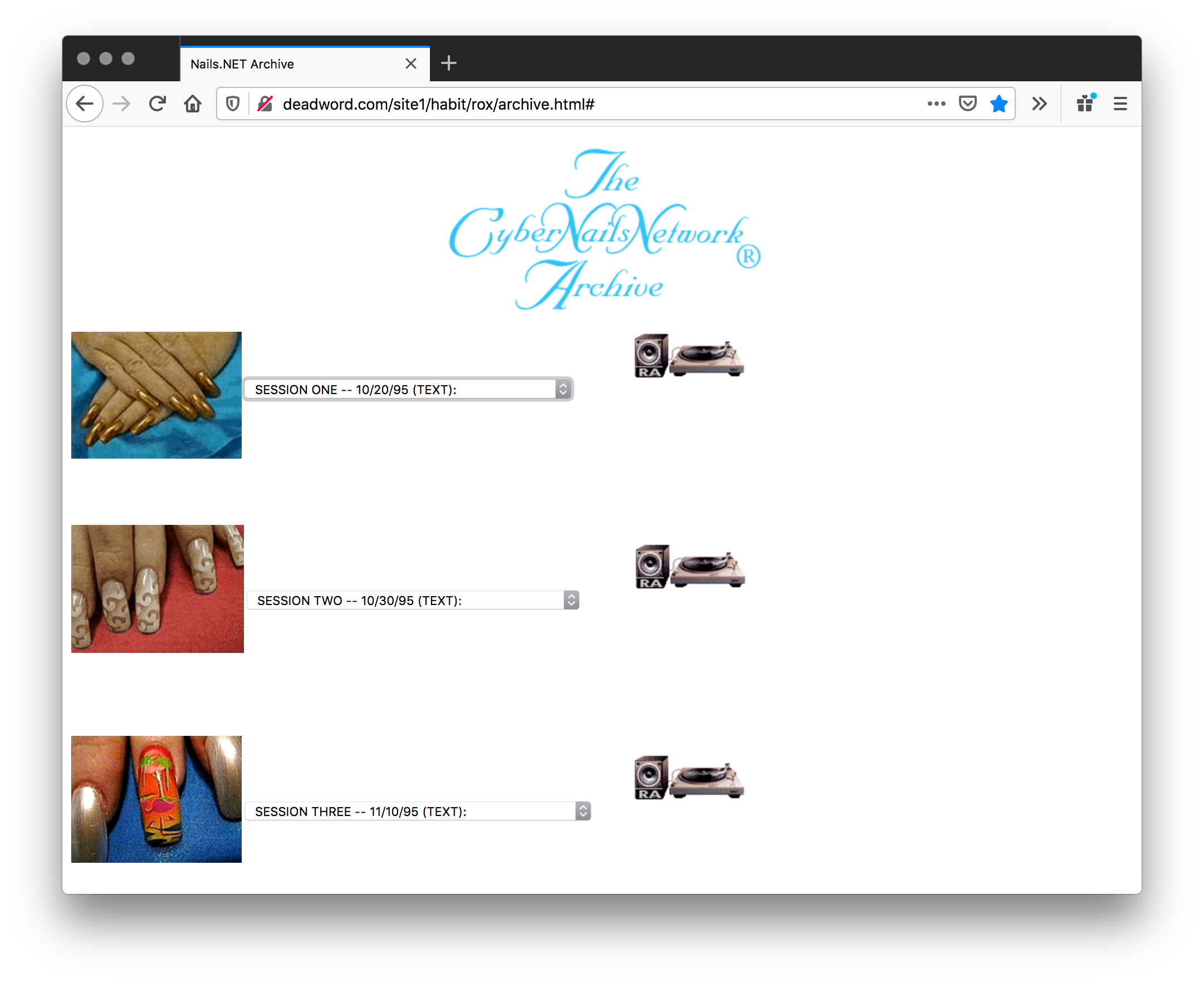
Screenshot, 2020, Firefox v76.0.1 on Mac OS 10.13.3; http://deadword.com/site1/habit/rox/archive.html#
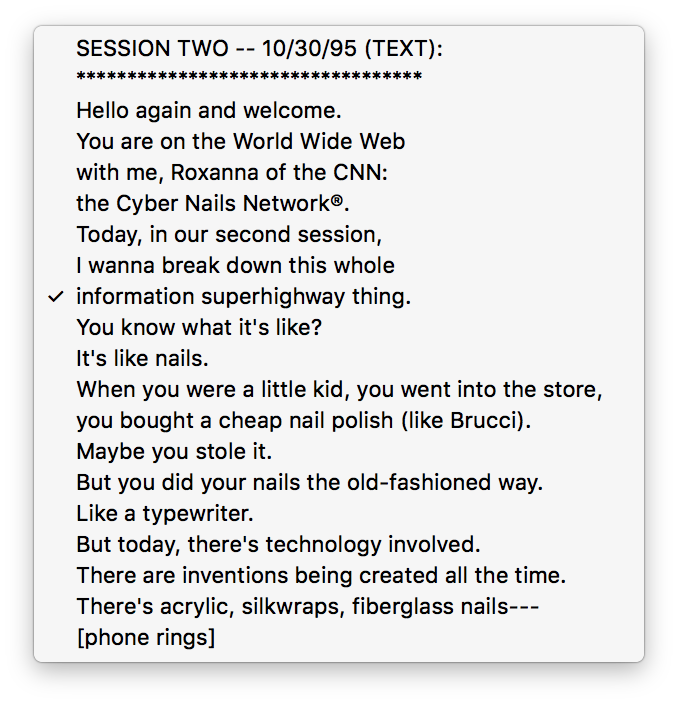
Screenshot, 2020, Firefox v76.0.1 on Mac OS 10.13.3; http://deadword.com/site1/habit/rox/archive.html#

artifact from http://deadword.com/site1/habit/rox/archive.html#
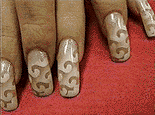
“Session Two”, image from http://deadword.com/site1/habit/rox/archive.html#

“Session Four”, image from http://deadword.com/site1/habit/rox/archive.html#
Hello again and welcome.
You are on the World Wide Web (x)
with me, Roxanna of the CNN:
the Cyber Nails Network®.
Today, in our second session,
I wanna break down this whole
information superhighway thing.
You know what it’s like?
It’s like nails.
When you were a little kid, you went into the store,
you bought a cheap nail polish (like Brucci).
Maybe you stole it.
But you did your nails the old-fashioned way.
Like a typewriter.
But today, there’s technology involved.
There are inventions being created all the time.
1995, Roxanna Mennella, http://deadword.com/site1/habit/rox/archive.html
http://deadword.com/site1/habit/rox/archive.html
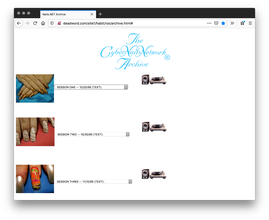
Screenshot, 2020, Firefox v76.0.1 on Mac OS 10.13.3; http://deadword.com/site1/habit/rox/archive.html#
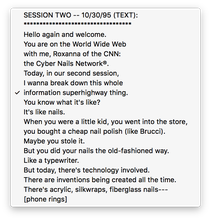
Screenshot, 2020, Firefox v76.0.1 on Mac OS 10.13.3; http://deadword.com/site1/habit/rox/archive.html#

artifact from http://deadword.com/site1/habit/rox/archive.html#

“Session Two”, image from http://deadword.com/site1/habit/rox/archive.html#
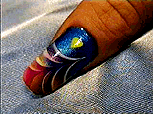
“Session Four”, image from http://deadword.com/site1/habit/rox/archive.html#
(49)
1995
Cyberpositive
0(rphan)d(rift>)
change for the machines, that’s all we -e ever done. -e ve changed enough now that the machines will be making all the changes from now on to download you through machines that began as e c.o s (electro encephalograms) and found their zenith as e.-.d’s (-electro encephalo-drains)
language breaks down (x) over the abysmal waters flash waiting epileptic in all dimensions
TIME STOPS
1995, 0(rphan)d(rift>), http://www.orphandriftarchive.com/becoming-cyberpositive/cyberpositive/; referred by Virginia Barratt and Francesca da Rimini (VNS Matrix)

Cyberpositive, p18–19, image from http://www.orphandriftarchive.com/becoming-cyberpositive/cyberpositive/
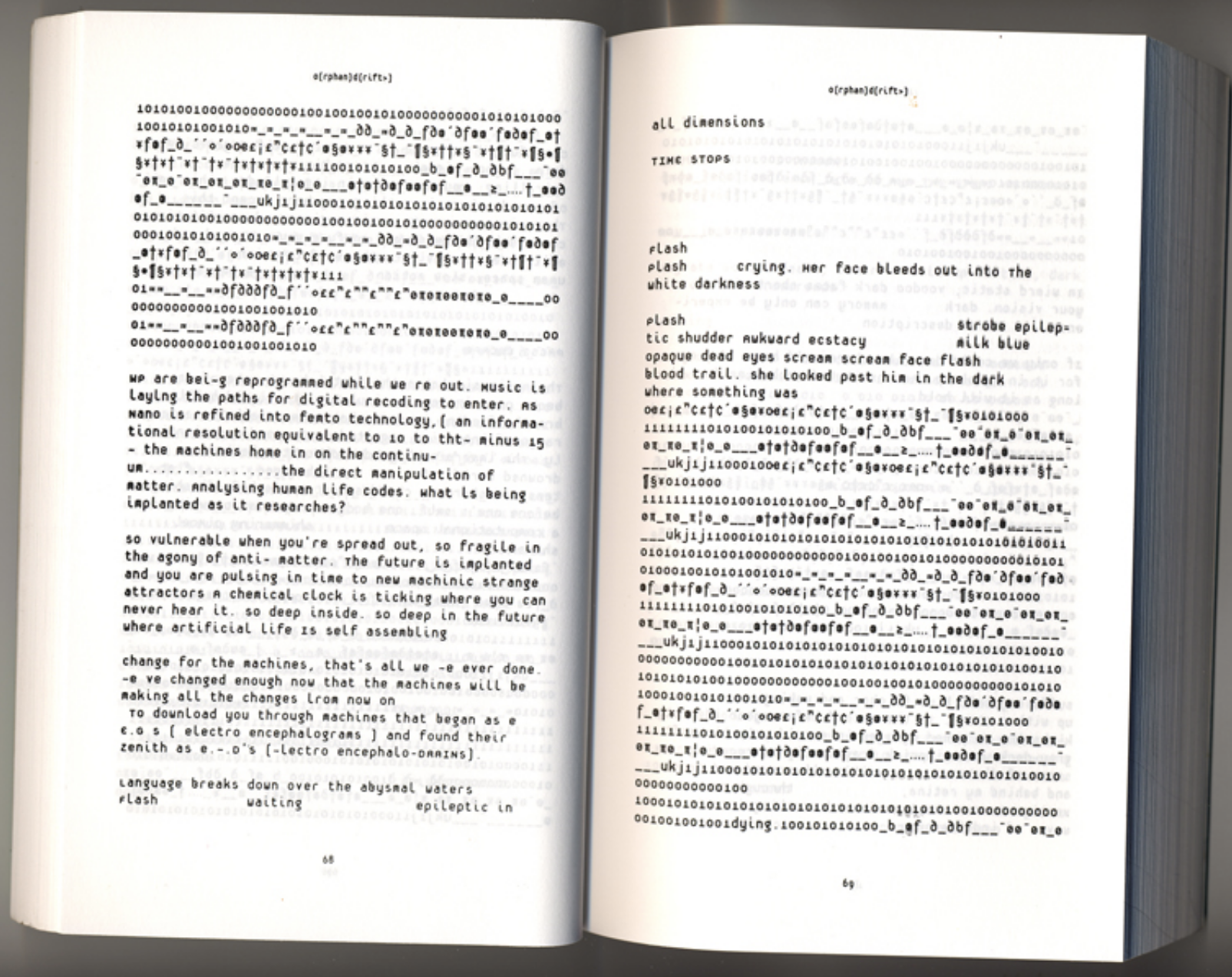
Cyberpositive, p68–69, image from http://www.orphandriftarchive.com/becoming-cyberpositive/cyberpositive/
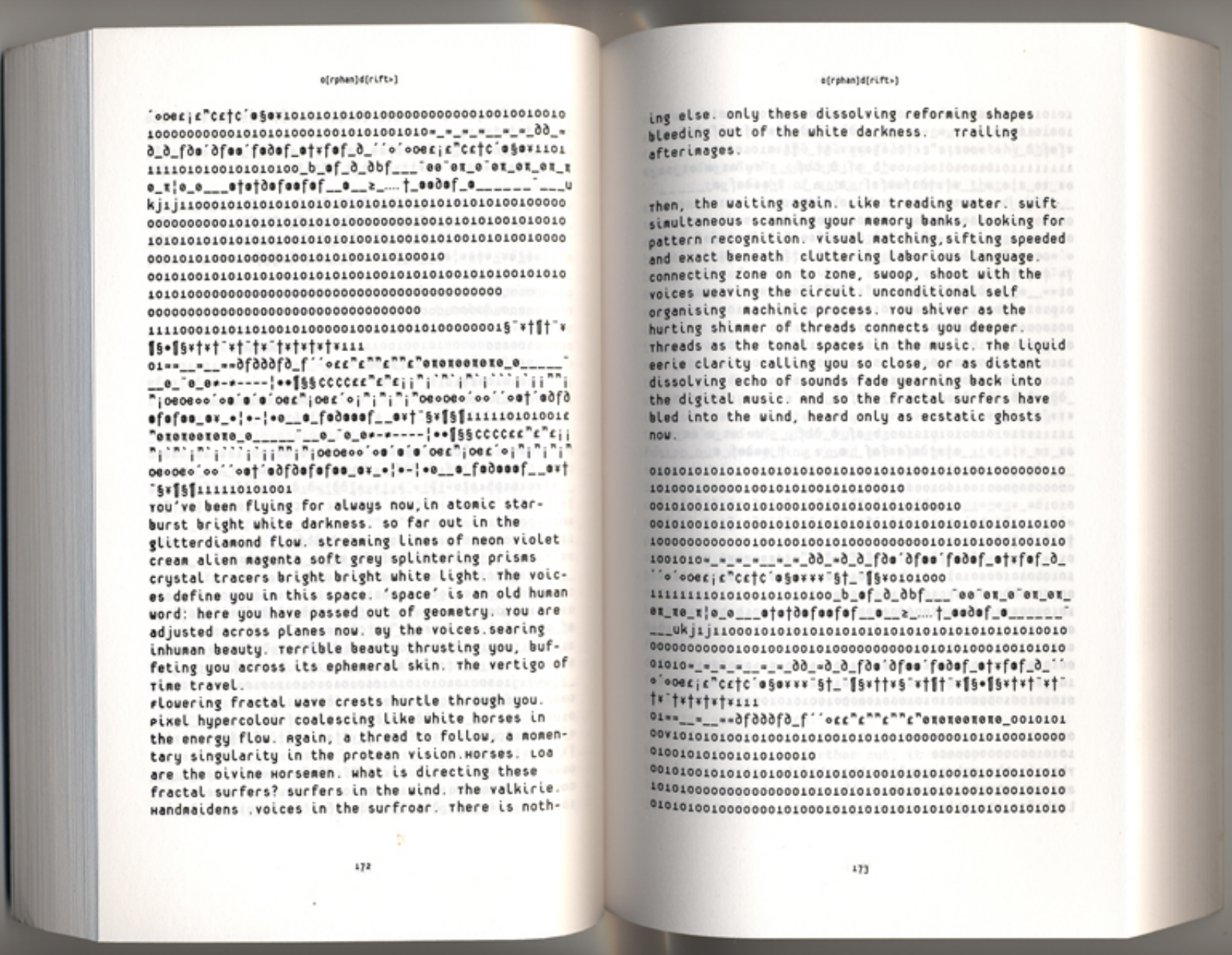
Cyberpositive, p172–173, image from http://www.orphandriftarchive.com/becoming-cyberpositive/cyberpositive/
change for the machines, that’s all we -e ever done. -e ve changed enough now that the machines will be making all the changes from now on to download you through machines that began as e c.o s (electro encephalograms) and found their zenith as e.-.d’s (-electro encephalo-drains)
language breaks down (x) over the abysmal waters flash waiting epileptic in all dimensions
TIME STOPS
1995, 0(rphan)d(rift>), http://www.orphandriftarchive.com/becoming-cyberpositive/cyberpositive/; referred by Virginia Barratt and Francesca da Rimini (VNS Matrix)
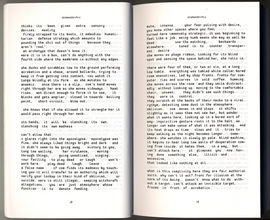
Cyberpositive, p18–19, image from http://www.orphandriftarchive.com/becoming-cyberpositive/cyberpositive/
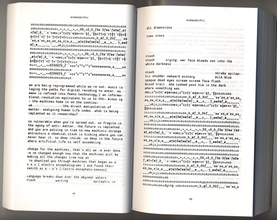
Cyberpositive, p68–69, image from http://www.orphandriftarchive.com/becoming-cyberpositive/cyberpositive/
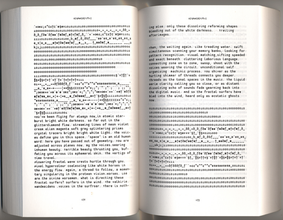
Cyberpositive, p172–173, image from http://www.orphandriftarchive.com/becoming-cyberpositive/cyberpositive/
(50)
1995
New Sciences: Cyborg Feminism and the Methodology of the Oppressed
Chela Sandoval
I propose another vision, […] namely that cyborg consciousness can be understood as the technological embodiment or a particular and specific form of oppositional consciousness that I have elsewhere describes as “US third world feminism.” (x) And indeed, if cyborg consciousness is to be considered as anything other than that which replicates the now dominant global world order, then cyborg consciousness must be developed out of a set of technologies that together comprise the methodology of the oppressed, a methodology that can provide the guides for survival and resistance under first world transnational cultural conditions. This oppositional “cyborg” consciousness has also been identified by terms such as “mestiza” consciousness, “situated subjectivities,” “womanism,” and “differential consciousness.” (x) In the interests of […] translation, […] from “cyborgology” to “feminism,” from “US third world feminism” to “cultural” and to “subaltern” theory, I trace the routes traveled by the methodology of the oppressed as encoded by [Donna] Haraway in “Cyborg Feminism.”
1995, Chela Sandoval, in The Cyborg Handbook, ed. Chris Hables Gray (New York: Routledge, 1995), pp. 407–421; excerpt pp. 408–409; submitted by Lidia Zuin
I propose another vision, […] namely that cyborg consciousness can be understood as the technological embodiment or a particular and specific form of oppositional consciousness that I have elsewhere describes as “US third world feminism.” (x) And indeed, if cyborg consciousness is to be considered as anything other than that which replicates the now dominant global world order, then cyborg consciousness must be developed out of a set of technologies that together comprise the methodology of the oppressed, a methodology that can provide the guides for survival and resistance under first world transnational cultural conditions. This oppositional “cyborg” consciousness has also been identified by terms such as “mestiza” consciousness, “situated subjectivities,” “womanism,” and “differential consciousness.” (x) In the interests of […] translation, […] from “cyborgology” to “feminism,” from “US third world feminism” to “cultural” and to “subaltern” theory, I trace the routes traveled by the methodology of the oppressed as encoded by [Donna] Haraway in “Cyborg Feminism.”
1995, Chela Sandoval, in The Cyborg Handbook, ed. Chris Hables Gray (New York: Routledge, 1995), pp. 407–421; excerpt pp. 408–409; submitted by Lidia Zuin
(51)
1995
The Future Looms: Weaving Women and Cybernetics
Sadie Plant
The computer emerges out of the history of weaving, the process so often said to be the quintessence of women’s work. The loom is the vanguard site of software development. Indeed, it is from the loom, or rather the process of weaving, that this paper takes another cue. Perhaps it is an instance of this process as well, for tales and texts are woven as surely as threads and fabrics. This paper is a yarn in both senses. It is about weaving women and cybernetics, (x) and is also weaving women and cybernetics together. It concerns the looms of the past, and also the future which looms over the patriarchal present and threatens the end of human history. […] Today, both woman and the computer screen the matrix, which also makes its appearance as the veils and screens on which its operations are displayed. This is the virtual reality which is also the absence of the penis and its power, but already more than the void.
1995, Sadie Plant, Body & Society 1, no. 3–4 (1995): pp. 45–64; excerpt p. 46
Editor’s Note: Many of the themes addressed in “The Future Looms” were expanded upon in Plant’s second book, Zeros and Ones: Digital Women and the New Technoculture. —MS
https://monoskop.org/images/1/13/Plant_Sadie_1995_The_Future_Looms_Weaving_Women_and_Cybernetics.pdf
The computer emerges out of the history of weaving, the process so often said to be the quintessence of women’s work. The loom is the vanguard site of software development. Indeed, it is from the loom, or rather the process of weaving, that this paper takes another cue. Perhaps it is an instance of this process as well, for tales and texts are woven as surely as threads and fabrics. This paper is a yarn in both senses. It is about weaving women and cybernetics, (x) and is also weaving women and cybernetics together. It concerns the looms of the past, and also the future which looms over the patriarchal present and threatens the end of human history. […] Today, both woman and the computer screen the matrix, which also makes its appearance as the veils and screens on which its operations are displayed. This is the virtual reality which is also the absence of the penis and its power, but already more than the void.
1995, Sadie Plant, Body & Society 1, no. 3–4 (1995): pp. 45–64; excerpt p. 46
Editor’s Note: Many of the themes addressed in “The Future Looms” were expanded upon in Plant’s second book, Zeros and Ones: Digital Women and the New Technoculture. —MS
https://monoskop.org/images/1/13/Plant_Sadie_1995_The_Future_Looms_Weaving_Women_and_Cybernetics.pdf
(52)
1995
Pretty Baby
Melinda Rackham
pretty baby doesn’t make a sound
this animation was my first foray into digital image manipulation..
it’s 1.5meg.. so in the interests of bandwidth and delivery
i have decided to remove the link to it.
basically the core engulfs while the jewels spin and sparkle….
it’s pretty.
across times and cultures women have used such diverse practices as intricately tattooing genitals, ritual scarification, piercing, depilation, nipple extension,
breast stretching, foot binding, infibulation, and surgical implants to attain beauty (x)
the core of this image is lifted from a televised liposuction operation.
1995, Melinda Rackham, https://subtle.net/wwwo/melinda.html
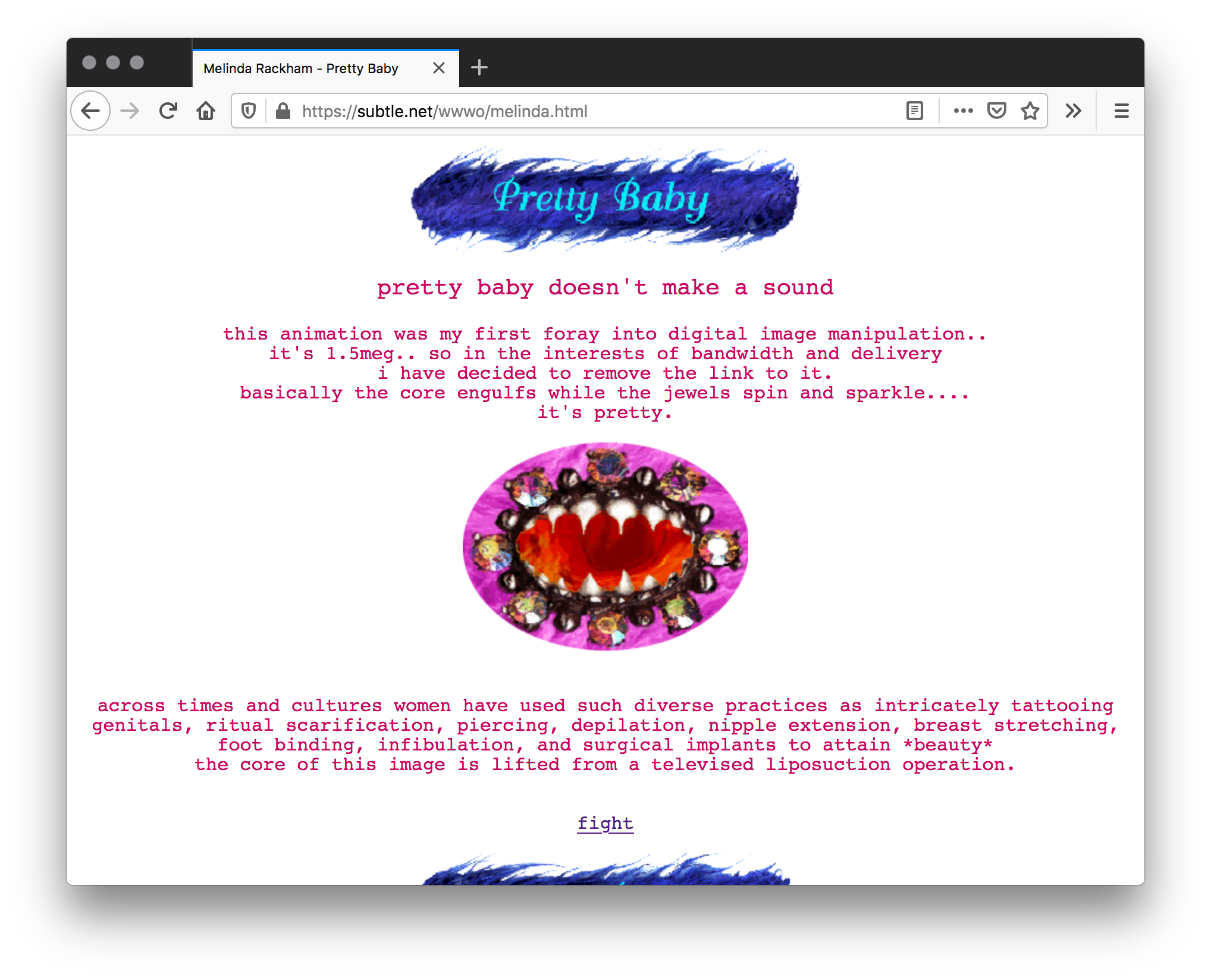
Screenshot, 2020, Firefox v76.0.1 on Mac OS 10.13.3; https://subtle.net/wwwo/melinda.html

artifact from https://subtle.net/wwwo/melinda.html
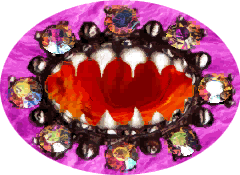
artifact from https://subtle.net/wwwo/melinda.html
pretty baby doesn’t make a sound
this animation was my first foray into digital image manipulation..
it’s 1.5meg.. so in the interests of bandwidth and delivery
i have decided to remove the link to it.
basically the core engulfs while the jewels spin and sparkle….
it’s pretty.
across times and cultures women have used such diverse practices as intricately tattooing genitals, ritual scarification, piercing, depilation, nipple extension,
breast stretching, foot binding, infibulation, and surgical implants to attain beauty (x)
the core of this image is lifted from a televised liposuction operation.
1995, Melinda Rackham, https://subtle.net/wwwo/melinda.html

Screenshot, 2020, Firefox v76.0.1 on Mac OS 10.13.3; https://subtle.net/wwwo/melinda.html

artifact from https://subtle.net/wwwo/melinda.html
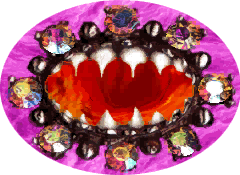
artifact from https://subtle.net/wwwo/melinda.html
(53)
1995
Soul Sista
Marilyn Nance
Be adventurous.
Touch everything.
See what happens.
Don’t use that back button!
Have no fear. Go forward, never go back.
Never give up. There is always someplace to go.
Soulsista is a storyteller, maybe a blues singer or a fortune teller, maybe an insurrectionist or a church sister. She has power, but, so do you. We are all endowed by the Creator with inherent inalienable rights, the power to transform--and be transformed.
1995–present, http://soulsista.com/; submitted by Sienna Shields
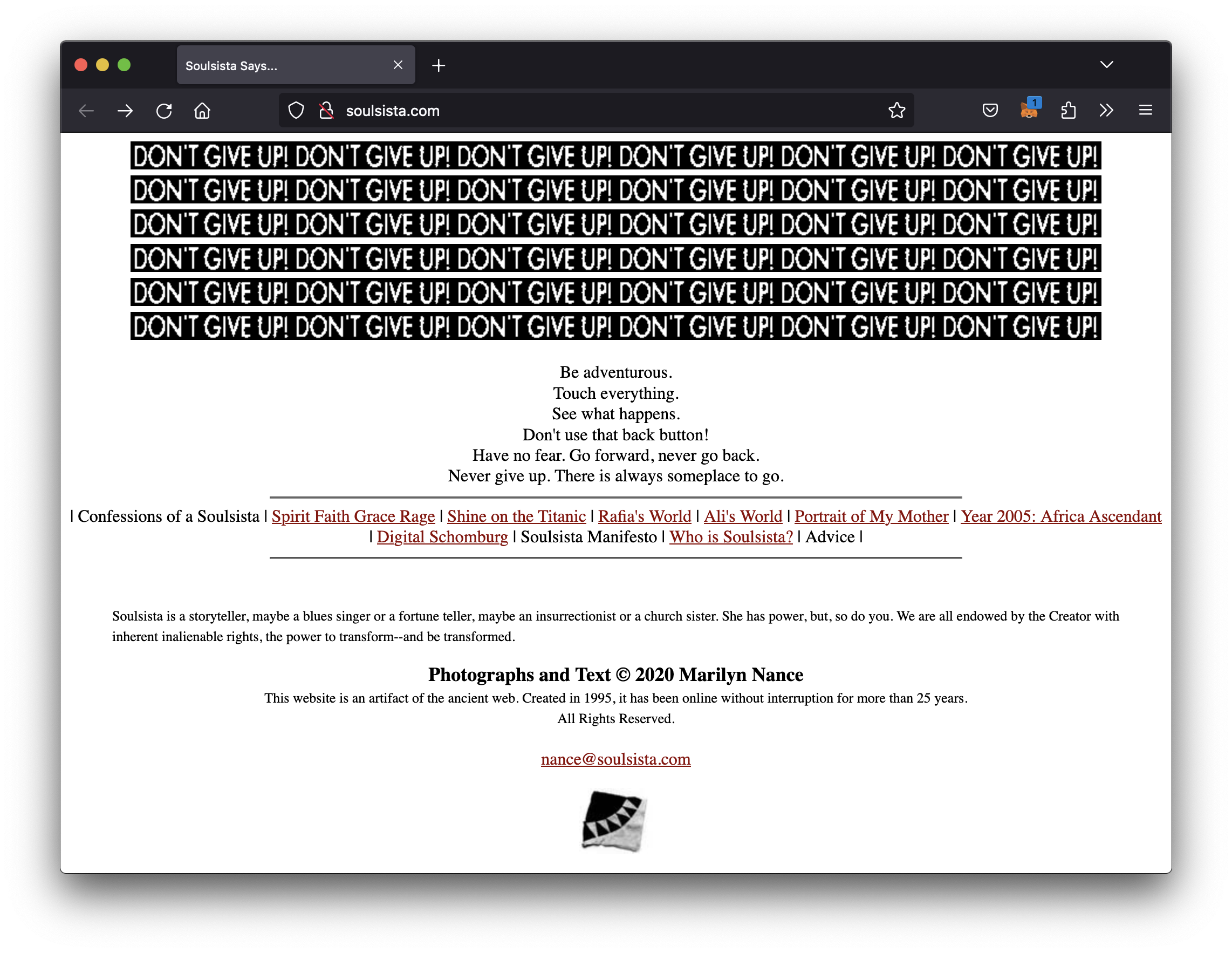
Screenshot, 2024, Firefox v121.0 on Mac OS 10.15.7; http://soulsista.com/

artifact from http://soulsista.com/
Be adventurous.
Touch everything.
See what happens.
Don’t use that back button!
Have no fear. Go forward, never go back.
Never give up. There is always someplace to go.
Soulsista is a storyteller, maybe a blues singer or a fortune teller, maybe an insurrectionist or a church sister. She has power, but, so do you. We are all endowed by the Creator with inherent inalienable rights, the power to transform--and be transformed.
1995–present, http://soulsista.com/; submitted by Sienna Shields
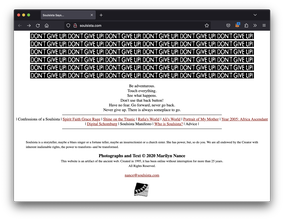
Screenshot, 2024, Firefox v121.0 on Mac OS 10.15.7; http://soulsista.com/
artifact from http://soulsista.com/
(54)
1996
Friendly Grrrls Guide to the Internet
Geekgirl
Hi, I'm geekgirl, (x) your guide to getting on-line. I’ve been “on-line” using BBS (Bulletin Board Services) and the Internet for about six years; I think it’s so kewl—and you will, too, with some practice and patience. The key to getting on the Internet, enjoying it and making the most out of it is perseverance. […]
If any of you grrrls hadn’t (like me) or haven’t done computers at school or had no “geeks” around to teach you some fancy on-line tricks and tips, watch out—you may feel like some huge wave at Bondi Beach has swallowed you up and spat you out! The Internet is wild and wicked—and can be a very bumpy ride—but in a dizzy, digital age, a grrrl just has to equip herself with the fashion accessories of the ‘90s:
- a computer with telecommunications software,
- a modem, (x)
- an ISP (Internet Service Provider) to get connected,
- money to pay the phone bill & extras, like video and sound cards,
- tenacity … the grrrrrrrrrrrrrrrrrrrrrrrrrrrrrrr as in grrrl.
1996, Geekgirl, https://web.archive.org/web/19980701090817/http://www.youth.nsw.gov.au/rob.upload/friendly/index.html
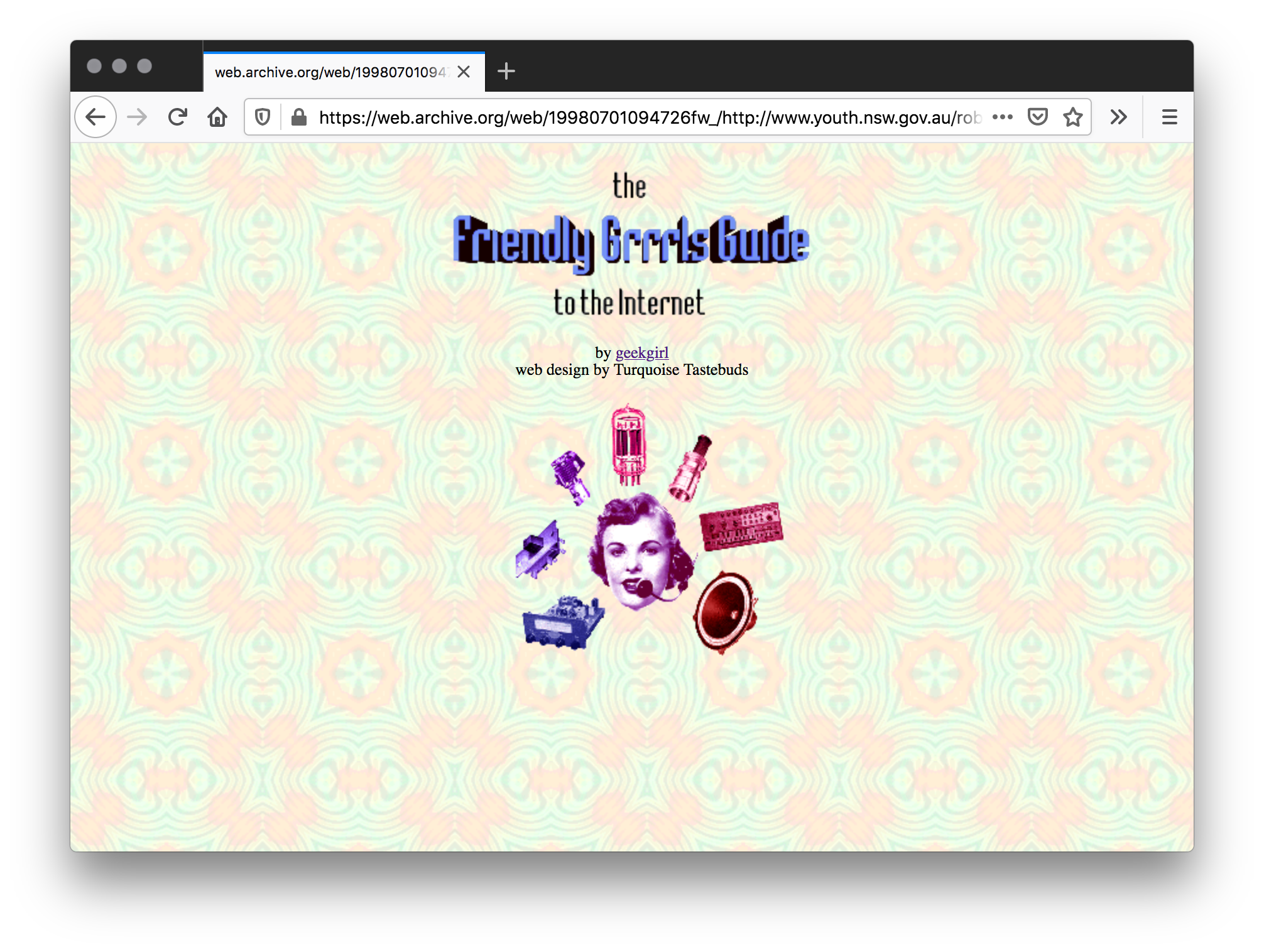
Wayback Machine, July 1, 1998; Screenshot, 2020, Firefox v76.0.1 on Mac OS 10.13.3; https://web.archive.org/web/19980701094726fw_/http://www.youth.nsw.gov.au/rob.upload/friendly/title.html
Hi, I'm geekgirl, (x) your guide to getting on-line. I’ve been “on-line” using BBS (Bulletin Board Services) and the Internet for about six years; I think it’s so kewl—and you will, too, with some practice and patience. The key to getting on the Internet, enjoying it and making the most out of it is perseverance. […]
If any of you grrrls hadn’t (like me) or haven’t done computers at school or had no “geeks” around to teach you some fancy on-line tricks and tips, watch out—you may feel like some huge wave at Bondi Beach has swallowed you up and spat you out! The Internet is wild and wicked—and can be a very bumpy ride—but in a dizzy, digital age, a grrrl just has to equip herself with the fashion accessories of the ‘90s:
- a computer with telecommunications software,
- a modem, (x)
- an ISP (Internet Service Provider) to get connected,
- money to pay the phone bill & extras, like video and sound cards,
- tenacity … the grrrrrrrrrrrrrrrrrrrrrrrrrrrrrrr as in grrrl.
1996, Geekgirl, https://web.archive.org/web/19980701090817/http://www.youth.nsw.gov.au/rob.upload/friendly/index.html
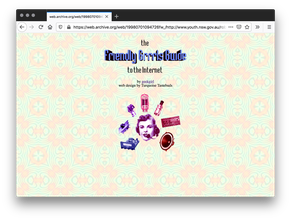
Wayback Machine, July 1, 1998; Screenshot, 2020, Firefox v76.0.1 on Mac OS 10.13.3; https://web.archive.org/web/19980701094726fw_/http://www.youth.nsw.gov.au/rob.upload/friendly/title.html
(55)
1996–
1998
WWWomen WebRing
WWWomen
This is The WWWomen’s Main Guided Tour WebRing Home Page. This ring, started in June of 1996, was developed to link women’s content on the web on a virtual online tour. (x) By using the ring, you can travel from one web site to another of women’s topics and resources until you eventually end up back on the page you started from (can also jump randomly!). It’s a great way for people to sample a guided tour of some great women’s sites.
1996, WWWomen, https://web.archive.org/web/19990117023610/http://www.wwwomen.com/webring.shtml

Banner screenshot, Wayback Machine, January 17, 1999; Screenshot, 2020, Firefox v76.0.1 on Mac OS 10.13.3; https://web.archive.org/web/19990117011938/http://www.wwwomen.com/about.shtml
This is The WWWomen’s Main Guided Tour WebRing Home Page. This ring, started in June of 1996, was developed to link women’s content on the web on a virtual online tour. (x) By using the ring, you can travel from one web site to another of women’s topics and resources until you eventually end up back on the page you started from (can also jump randomly!). It’s a great way for people to sample a guided tour of some great women’s sites.
1996, WWWomen, https://web.archive.org/web/19990117023610/http://www.wwwomen.com/webring.shtml

Banner screenshot, Wayback Machine, January 17, 1999; Screenshot, 2020, Firefox v76.0.1 on Mac OS 10.13.3; https://web.archive.org/web/19990117011938/http://www.wwwomen.com/about.shtml
(56)
1996
Virtual Sisterhood
Barbara Ann O‘Leary
Virtual Sisterhood, a global women’s electronic support network, is dedicated to strengthening and magnifying the impact of feminist organizing through promotion of electronic communications use within the global women’s movement. [Our priorities are to] create and facilitate a global network of women committed to enhancing their own and other women’s activism through effective use of electronic communications. The network (x) prioritizes inclusion and empowerment of women of color, immigrant and refugee women, low-income women, lesbians, women from the Global South, older women, young women, women with disabilities, rural women and women from other communities, which have traditionally had little or no access to or control of electronic communications technology.
1996, Barbara Ann O’Leary, https://web.archive.org/web/19990117022220/http://www.igc.apc.org/vsister/vsister.html
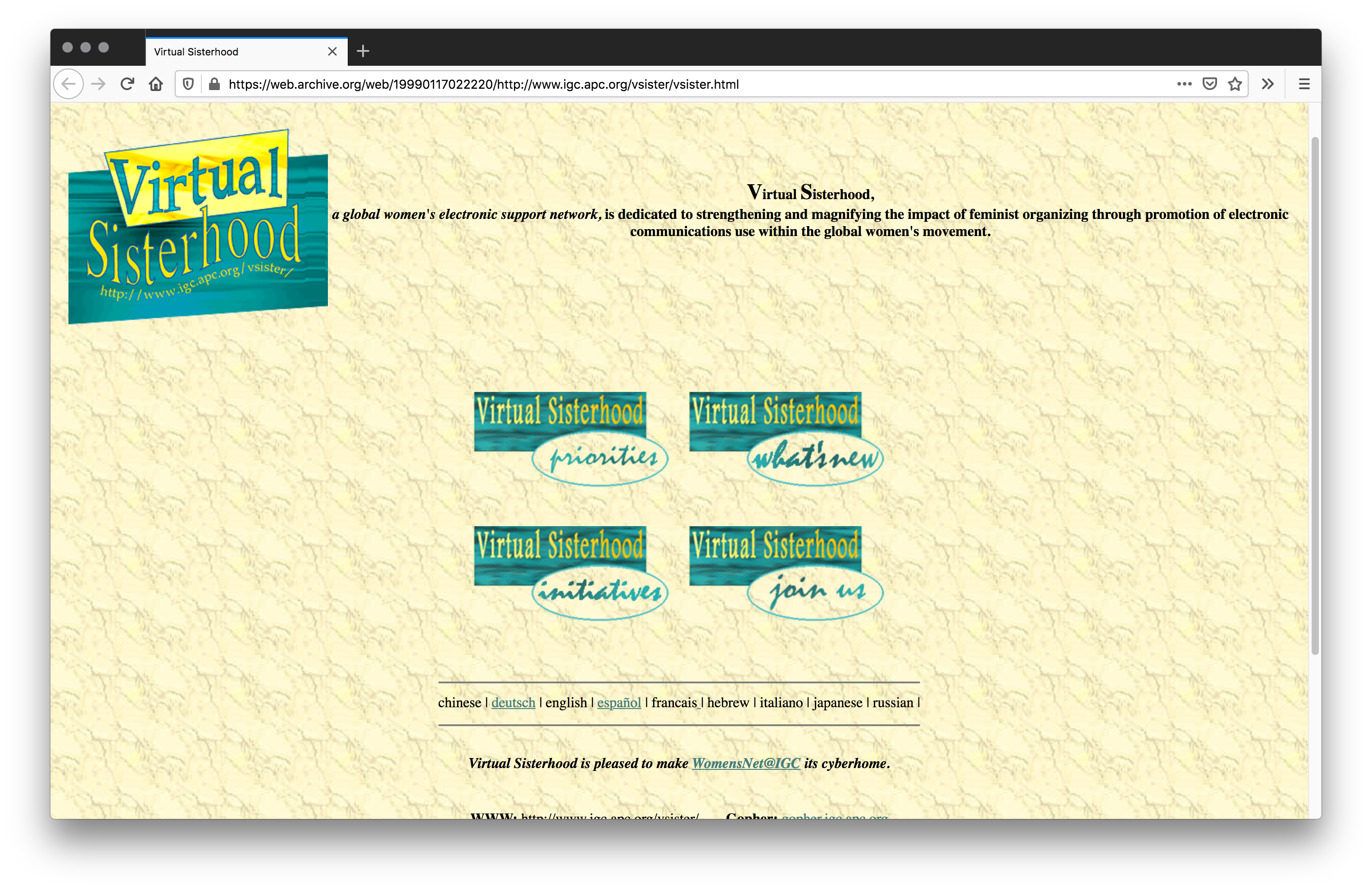
Wayback Machine, January 17, 1999; Screenshot, 2020, Firefox v76.0.1 on Mac OS 10.13.3; https://web.archive.org/web/19990117022220/http://www.igc.apc.org/vsister/vsister.html

Logo from Wayback Machine, January 17, 1999; Screenshot, 2020, Firefox v76.0.1 on Mac OS 10.13.3; https://web.archive.org/web/19990117022220/http://www.igc.apc.org/vsister/vsister.html
Virtual Sisterhood, a global women’s electronic support network, is dedicated to strengthening and magnifying the impact of feminist organizing through promotion of electronic communications use within the global women’s movement. [Our priorities are to] create and facilitate a global network of women committed to enhancing their own and other women’s activism through effective use of electronic communications. The network (x) prioritizes inclusion and empowerment of women of color, immigrant and refugee women, low-income women, lesbians, women from the Global South, older women, young women, women with disabilities, rural women and women from other communities, which have traditionally had little or no access to or control of electronic communications technology.
1996, Barbara Ann O’Leary, https://web.archive.org/web/19990117022220/http://www.igc.apc.org/vsister/vsister.html

Wayback Machine, January 17, 1999; Screenshot, 2020, Firefox v76.0.1 on Mac OS 10.13.3; https://web.archive.org/web/19990117022220/http://www.igc.apc.org/vsister/vsister.html

Logo from Wayback Machine, January 17, 1999; Screenshot, 2020, Firefox v76.0.1 on Mac OS 10.13.3; https://web.archive.org/web/19990117022220/http://www.igc.apc.org/vsister/vsister.html
(57)
1996
Bitch Mutant Manifesto
VNS Matrix
We are the malignant accident which fell into your system while you were sleeping. And when you wake we will terminate your digital delusions, hijacking (x) your impeccable software. Your fingers probe my neural network. The tingling sensation in the tips of your fingers are my synapses responding to your touch. It’s not chemistry, it‘s electric.
Stop fingering me.
Don’t ever stop fingering my suppurating holes, extending my boundary but in cipherspace there are no bounds
BUT IN SPIRALSPACE (x) THERE IS NO THEY
there is only us
Trying to flee the binary I enter the chromozone which is not one
XXYXXYXXYXXYXXYXXYXXYXXYXXYXXYXXYXXYXXYXX
genderfuck me baby
resistance is futile
entice me splice me map my ABANDONED genome as your project
artificially involve me
i wanna live forever
upload me in yr shiny shiny PVC future
SUCK MY CODE
1996, VNS Matrix, https://vnsmatrix.net/projects/bitch-mutant-manifesto
https://www.obn.org/reading_room/manifestos/html/bitch.html

video still 01:33, adaptation of “Bitch Mutant Manifesto” by Lukas Engelhardt 2017, https://www.youtube.com/watch?v=bOXS6BVbFCg
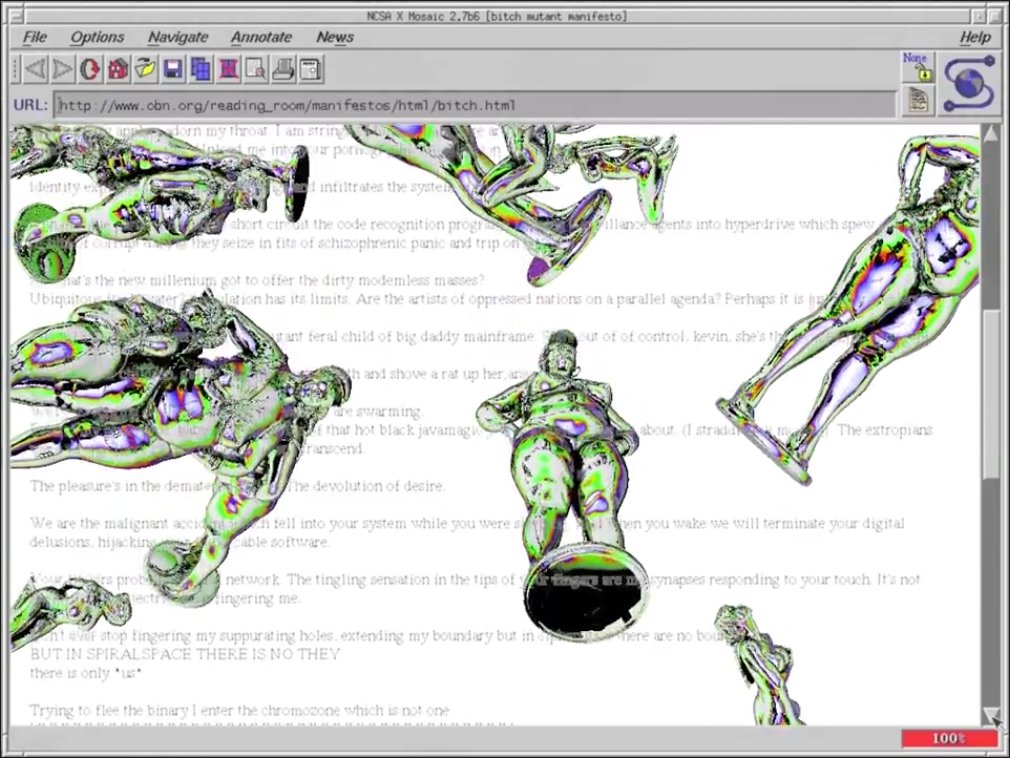
video still 02:08, adaptation of “Bitch Mutant Manifesto” by Lukas Engelhardt 2017, https://www.youtube.com/watch?v=bOXS6BVbFCg

video still 03:10, adaptation of “Bitch Mutant Manifesto” by Lukas Engelhardt 2017, https://www.youtube.com/watch?v=bOXS6BVbFCg
We are the malignant accident which fell into your system while you were sleeping. And when you wake we will terminate your digital delusions, hijacking (x) your impeccable software. Your fingers probe my neural network. The tingling sensation in the tips of your fingers are my synapses responding to your touch. It’s not chemistry, it‘s electric.
Stop fingering me.
Don’t ever stop fingering my suppurating holes, extending my boundary but in cipherspace there are no bounds
BUT IN SPIRALSPACE (x) THERE IS NO THEY
there is only us
Trying to flee the binary I enter the chromozone which is not one
XXYXXYXXYXXYXXYXXYXXYXXYXXYXXYXXYXXYXXYXX
genderfuck me baby
resistance is futile
entice me splice me map my ABANDONED genome as your project
artificially involve me
i wanna live forever
upload me in yr shiny shiny PVC future
SUCK MY CODE
1996, VNS Matrix, https://vnsmatrix.net/projects/bitch-mutant-manifesto
https://www.obn.org/reading_room/manifestos/html/bitch.html
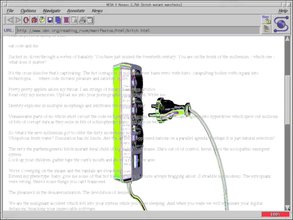
video still 01:33, adaptation of “Bitch Mutant Manifesto” by Lukas Engelhardt 2017, https://www.youtube.com/watch?v=bOXS6BVbFCg
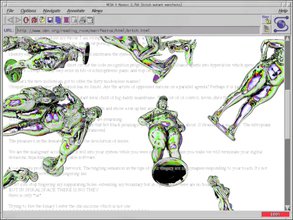
video still 02:08, adaptation of “Bitch Mutant Manifesto” by Lukas Engelhardt 2017, https://www.youtube.com/watch?v=bOXS6BVbFCg

video still 03:10, adaptation of “Bitch Mutant Manifesto” by Lukas Engelhardt 2017, https://www.youtube.com/watch?v=bOXS6BVbFCg
(58)
1996
Melanet: Watoto World
William Jordan, Rodney Jordan
New Perspective Technologies, the creators of the MELANET Communication and Information Network, today announced the establishment of the Watoto World Website on the Internet. Watoto World [watoto is Kiswahili for children] was created to bring the creativity of African heritage (x) children to the Internet; provide information and instruction for African American parents to meet the challenges of parenting now and in the 21st century; encourage educators and school systems to provide and utilize Internet access and computer technology in the classroom; and to highlight African Centered education and independent Black schools.
1996, William Jordan and Rodney Jordan; excerpt from New Perspective Technologies, “Internet Website for African Heritage Children, Parents, and Educators Opens!” press release, January 16, 1996, http://www.melanet.com/watoto/watoto.html
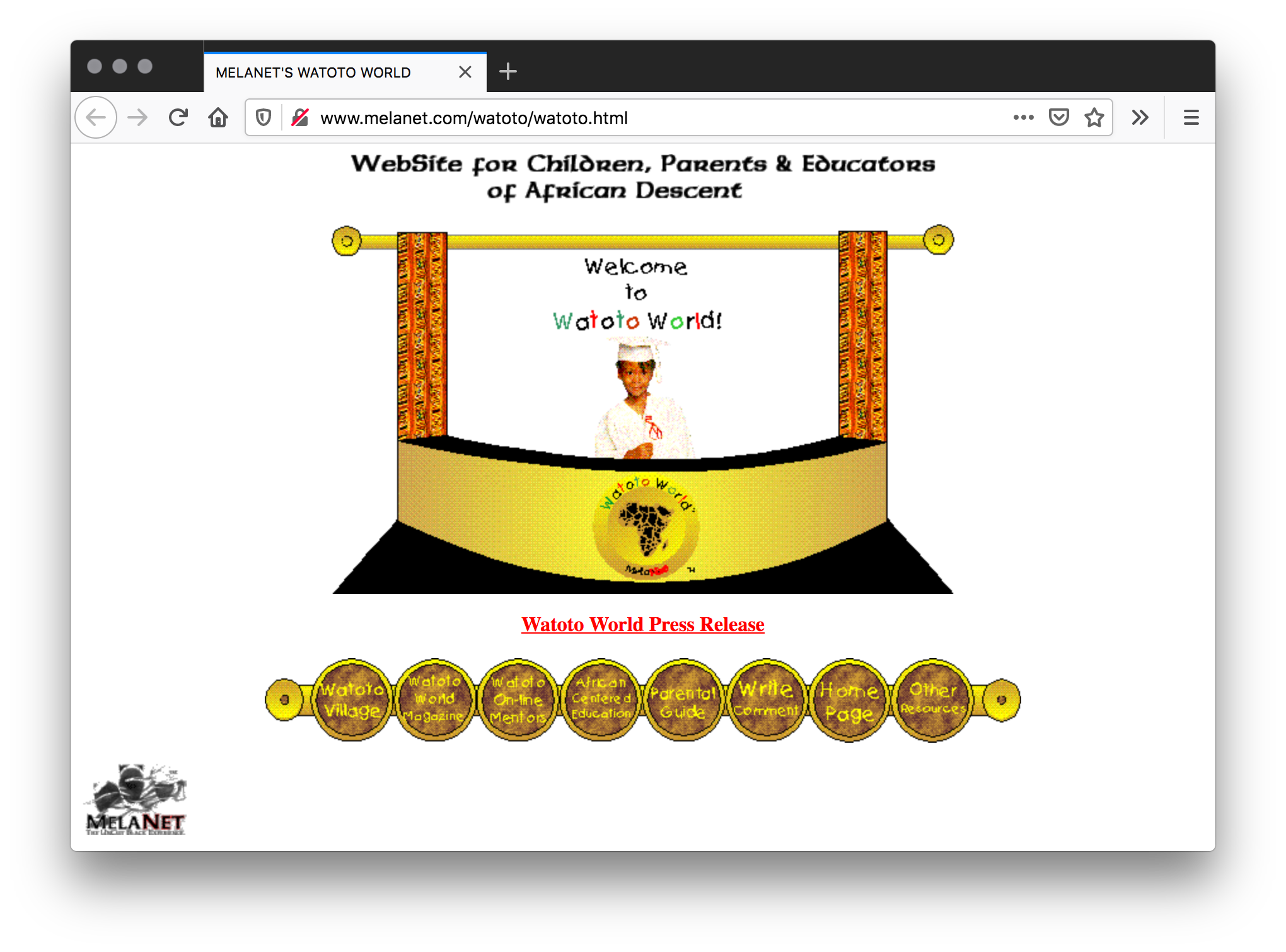
Screenshot, 2020, Firefox v76.0.1 on Mac OS 10.13.3; http://www.melanet.com/watoto/watoto.html

Artifact from http://www.melanet.com/watoto/watoto.html
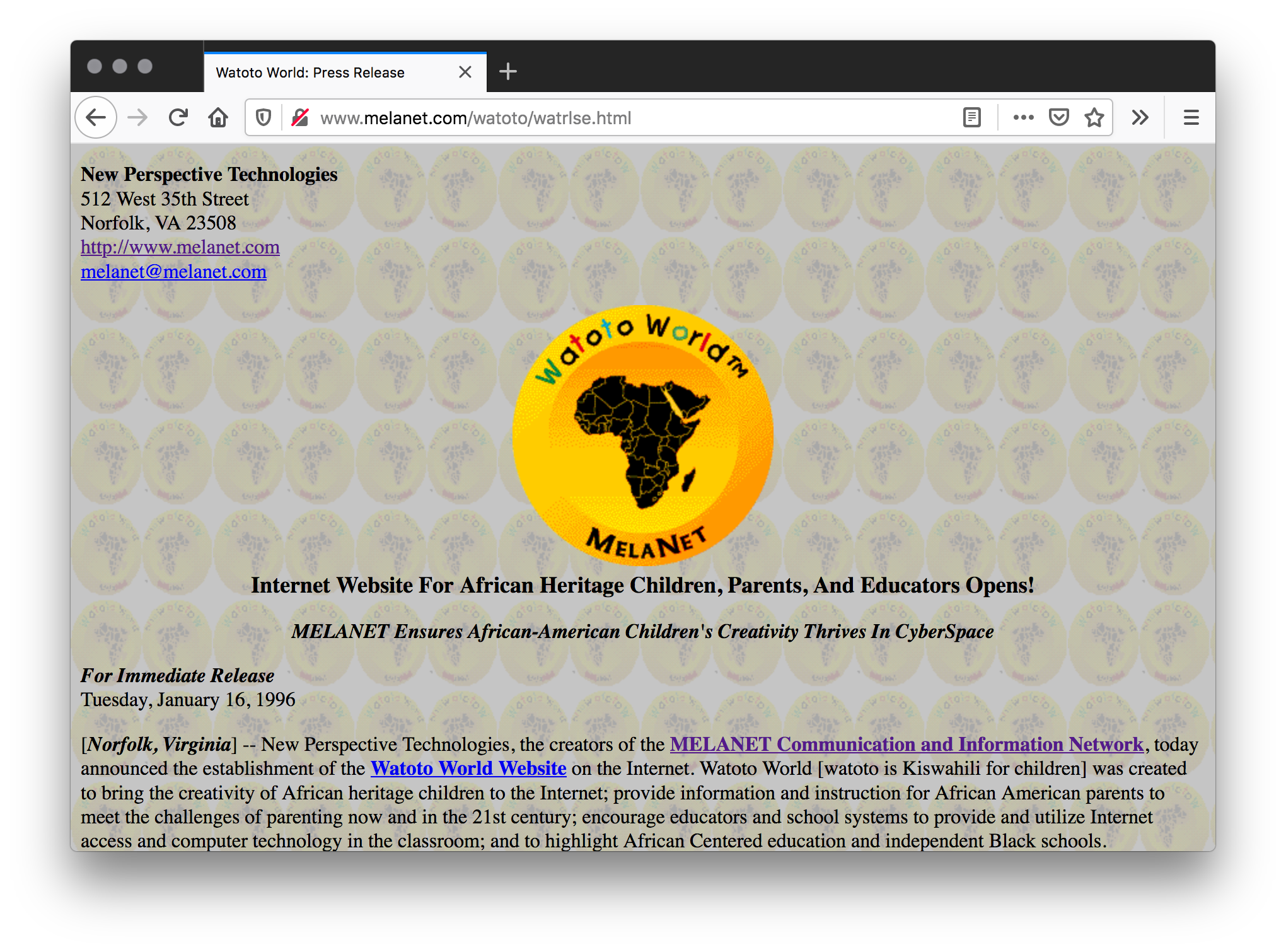
Screenshot, 2020, Firefox v76.0.1 on Mac OS 10.13.3; http://www.melanet.com/watoto/watrlse.html

Artifact from http://www.melanet.com/watoto/watrlse.html

Screenshot, 2020, Firefox v76.0.1 on Mac OS 10.13.3; http://www.melanet.com/watoto/village.html

Artifact from http://www.melanet.com/watoto/village.html

Artifact from http://www.melanet.com/watoto/watrlse.html
New Perspective Technologies, the creators of the MELANET Communication and Information Network, today announced the establishment of the Watoto World Website on the Internet. Watoto World [watoto is Kiswahili for children] was created to bring the creativity of African heritage (x) children to the Internet; provide information and instruction for African American parents to meet the challenges of parenting now and in the 21st century; encourage educators and school systems to provide and utilize Internet access and computer technology in the classroom; and to highlight African Centered education and independent Black schools.
1996, William Jordan and Rodney Jordan; excerpt from New Perspective Technologies, “Internet Website for African Heritage Children, Parents, and Educators Opens!” press release, January 16, 1996, http://www.melanet.com/watoto/watoto.html
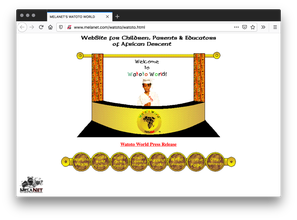
Screenshot, 2020, Firefox v76.0.1 on Mac OS 10.13.3; http://www.melanet.com/watoto/watoto.html

Artifact from http://www.melanet.com/watoto/watoto.html
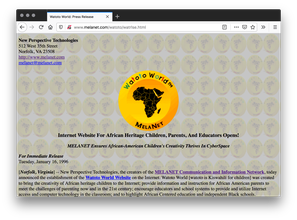
Screenshot, 2020, Firefox v76.0.1 on Mac OS 10.13.3; http://www.melanet.com/watoto/watrlse.html

Artifact from http://www.melanet.com/watoto/watrlse.html

Screenshot, 2020, Firefox v76.0.1 on Mac OS 10.13.3; http://www.melanet.com/watoto/village.html

Artifact from http://www.melanet.com/watoto/village.html

Artifact from http://www.melanet.com/watoto/watrlse.html
(59)
1996
Electronic Civil Disobedience and Other Unpopular Ideas
Critical Art Ensemble
One essential characteristic that sets late capitalism apart from other political and economic forms is its mode of representing power: What was once a sedentary concrete mass has now become a nomadic electronic flow. Before computerized information management, the heart of institutional command and control was easy to locate. In fact, the conspicuous appearance of the halls of power was used by regimes to maintain their hegemony. Castles, palaces, government bureaucracies, corporate home offices, and other architectural structures stood looming in city centers, daring malcontents and underground forces to challenge their fortifications. These structures, bespeaking an impregnable and everlasting solidity, could stop or demoralize contestational movements before they started. […] If the fortifications were breached, the regime would most likely collapse. Within this broad historical context emerged the general strategy for civil disobedience. (x)
1996, Critical Art Ensemble, https://web.archive.org/web/19991128162305/http://www.critical-art.net/
Editor’s Note: When I announced the first version of the Cyberfeminism Index in March 2019, I received a message from someone, who I will leave unnamed, regarding the sexual assault perpetrated by Steve Kurtz of Critical Art Ensemble against two graduate students. Kurtz quietly resigned from the university in 2015. Rather than erasing CAE from this history, we believe it is best to offer this unfortunate context here to honor the victims and to surface the complicated history of CAE and its members. —MS

Electronic Civil Disobedience presented in the window of Printed Matter, NYC, 1994; http://critical-art.net/electronic-civil-disobedience-ecd-printed-matter-nyc-1994/
One essential characteristic that sets late capitalism apart from other political and economic forms is its mode of representing power: What was once a sedentary concrete mass has now become a nomadic electronic flow. Before computerized information management, the heart of institutional command and control was easy to locate. In fact, the conspicuous appearance of the halls of power was used by regimes to maintain their hegemony. Castles, palaces, government bureaucracies, corporate home offices, and other architectural structures stood looming in city centers, daring malcontents and underground forces to challenge their fortifications. These structures, bespeaking an impregnable and everlasting solidity, could stop or demoralize contestational movements before they started. […] If the fortifications were breached, the regime would most likely collapse. Within this broad historical context emerged the general strategy for civil disobedience. (x)
1996, Critical Art Ensemble, https://web.archive.org/web/19991128162305/http://www.critical-art.net/
Editor’s Note: When I announced the first version of the Cyberfeminism Index in March 2019, I received a message from someone, who I will leave unnamed, regarding the sexual assault perpetrated by Steve Kurtz of Critical Art Ensemble against two graduate students. Kurtz quietly resigned from the university in 2015. Rather than erasing CAE from this history, we believe it is best to offer this unfortunate context here to honor the victims and to surface the complicated history of CAE and its members. —MS

Electronic Civil Disobedience presented in the window of Printed Matter, NYC, 1994; http://critical-art.net/electronic-civil-disobedience-ecd-printed-matter-nyc-1994/
(60)
1996
Wired Women: Gender and New Realities in Cyberspace
Lynn Cherny, Elizabeth Reba Weise
“Virtual sex” is a generic term for erotic interaction between individuals whose bodies may never touch, who may never even see one anothers’ faces or exchange real names. […] Certainly virtual sex has come to the fore at the same time in history that various means of deliberately altering the human body—some of which had previously been confined to specific subcultures—have become increasingly popular. […] Demonstrating an adaptability admirably in keeping the seemingly endless evolutionary permutations of capitalism, human beings have turned the machinery of power that surrounds them into sources of play and pleasure. […] There is a certain kind of freedom in virtual sex. (x) […] In virtual reality, mind and body, female and male, gay and straight, don’t seem to be such natural oppositions anymore, or even natural categories to assign to people. The reason for this is simple: in virtual reality, you are whoever you say you are.
1996, Lynn Cherny and Elizabeth Reba Weise, eds. (Seattle: Seal Press, 1996); excerpt from Shannon McRae, “Coming Apart at the Seams: Sex, Text, and the Virtual Body,” in Cherny and Weise, Wired Women, pp. 242–244
https://archive.org/details/wiredwomengender00cher https://www.worldcat.org/title/wired-women-gender-and-new-realities-in-cyberspace/oclc/33947404
“Virtual sex” is a generic term for erotic interaction between individuals whose bodies may never touch, who may never even see one anothers’ faces or exchange real names. […] Certainly virtual sex has come to the fore at the same time in history that various means of deliberately altering the human body—some of which had previously been confined to specific subcultures—have become increasingly popular. […] Demonstrating an adaptability admirably in keeping the seemingly endless evolutionary permutations of capitalism, human beings have turned the machinery of power that surrounds them into sources of play and pleasure. […] There is a certain kind of freedom in virtual sex. (x) […] In virtual reality, mind and body, female and male, gay and straight, don’t seem to be such natural oppositions anymore, or even natural categories to assign to people. The reason for this is simple: in virtual reality, you are whoever you say you are.
1996, Lynn Cherny and Elizabeth Reba Weise, eds. (Seattle: Seal Press, 1996); excerpt from Shannon McRae, “Coming Apart at the Seams: Sex, Text, and the Virtual Body,” in Cherny and Weise, Wired Women, pp. 242–244
https://archive.org/details/wiredwomengender00cher https://www.worldcat.org/title/wired-women-gender-and-new-realities-in-cyberspace/oclc/33947404
(61)
1996
Performing the Digital Body—A Ghost Story
Theresa M. Senft
For me, it’s about ghosts. My motives take the shape of a slim blue wrist, an IV drip, a steroid-induced mustache. If I stop typing on my keyboard, and listen, I can still hear her. Now, she’s negotiating an uneasy truce with an air tube—the one living in her throat since her third brain surgery. I see the panic on her face. I try to keep the panic out of my voice. Work with the machine, I tell her. It’s saving your life. (x) It’s strange; even after my mother was strong enough to forego her ventilator, that sound took up space in my memory. My mother died two years ago, which is not coincidentally when I became obsessed with writing about the Internet, the performances of the digital bodies therein, the ghost stories told by those bodies. […]
There is a saying that goes, “A feminist always asks, Who tells the story and what precisely is told?” Indeed, it is possible to summarize most of contemporary feminism as an extended performance of story-telling, a continual struggle with those codes in narrative which have said about women, “it was ever thus.”
1996, Theresa M. Senft, Women & Performance: a journal of feminist theory 9, no. 1 (1996): pp. 9–33; excerpt, p. 9
https://www.tandfonline.com/doi/abs/10.1080/07407709608571248
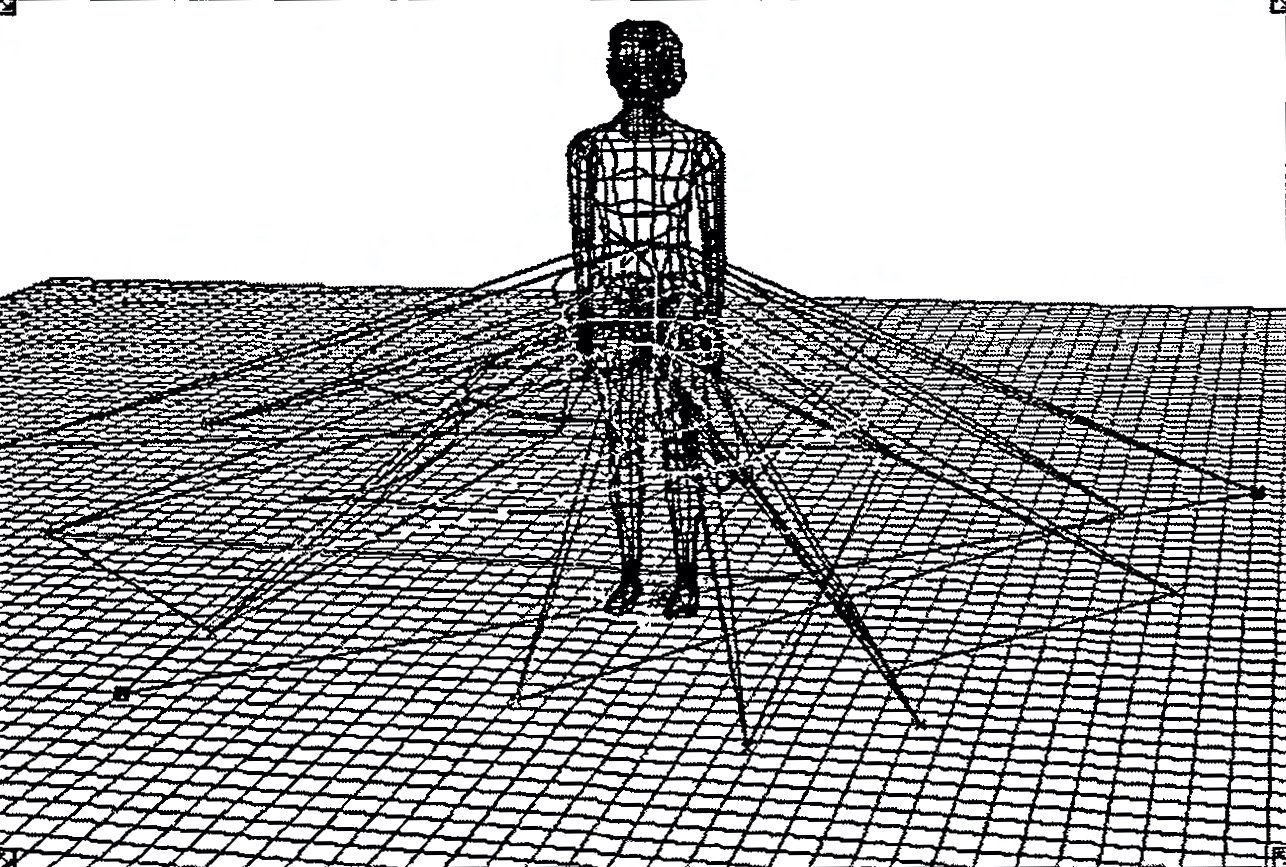
image from pg2 of essay (pdf saved locally)
For me, it’s about ghosts. My motives take the shape of a slim blue wrist, an IV drip, a steroid-induced mustache. If I stop typing on my keyboard, and listen, I can still hear her. Now, she’s negotiating an uneasy truce with an air tube—the one living in her throat since her third brain surgery. I see the panic on her face. I try to keep the panic out of my voice. Work with the machine, I tell her. It’s saving your life. (x) It’s strange; even after my mother was strong enough to forego her ventilator, that sound took up space in my memory. My mother died two years ago, which is not coincidentally when I became obsessed with writing about the Internet, the performances of the digital bodies therein, the ghost stories told by those bodies. […]
There is a saying that goes, “A feminist always asks, Who tells the story and what precisely is told?” Indeed, it is possible to summarize most of contemporary feminism as an extended performance of story-telling, a continual struggle with those codes in narrative which have said about women, “it was ever thus.”
1996, Theresa M. Senft, Women & Performance: a journal of feminist theory 9, no. 1 (1996): pp. 9–33; excerpt, p. 9
https://www.tandfonline.com/doi/abs/10.1080/07407709608571248
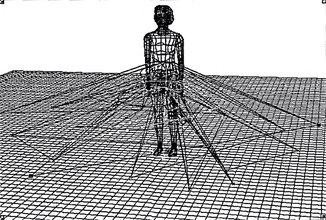
image from pg2 of essay (pdf saved locally)
(62)
1996
When the Personal Becomes Digitial: Linda Dement and Barbara Hammer Move Towards a Lesbian Cyberspace
Holly Willis, Mikki Halpin
Identity—queer identity—has long been connected to issues and ideas of space. Queers are classified by position: in or out, top or bottom, fringe or mainstream. There are gay districts, dyke bars, drag (x) strips. In these spaces, issues of community and self are framed. In these spaces, as we have heard over and over again, the personal is the political. But how is that nebulously defined queer identity framed in cyberspace? In this review, which spins off from a digital media show we curated for the New York Gay and Lesbian Experimental Film Festival, we look at two artists, both women, who are mapping both themselves and their community in an electronic theater of operations.
1996, Holly Willis and Mikki Halpin, Women & Performance: a journal of feminist theory 9, no. 1 (1996): pp. 233–238; excerpt p. 233
https://www.tandfonline.com/doi/abs/10.1080/07407709608571262
Identity—queer identity—has long been connected to issues and ideas of space. Queers are classified by position: in or out, top or bottom, fringe or mainstream. There are gay districts, dyke bars, drag (x) strips. In these spaces, issues of community and self are framed. In these spaces, as we have heard over and over again, the personal is the political. But how is that nebulously defined queer identity framed in cyberspace? In this review, which spins off from a digital media show we curated for the New York Gay and Lesbian Experimental Film Festival, we look at two artists, both women, who are mapping both themselves and their community in an electronic theater of operations.
1996, Holly Willis and Mikki Halpin, Women & Performance: a journal of feminist theory 9, no. 1 (1996): pp. 233–238; excerpt p. 233
https://www.tandfonline.com/doi/abs/10.1080/07407709608571262
(63)
1996
Phone Sex is Cool: Chat-Lines as Superconductors
Marcus Boon
The telephone is a prosthetic phenomenon, and when phone (or other forms of cyber) sex (x) are critiqued, the arguments for and against them invariably revolve around the problem of prosthesis. For example, “real sex” (one argument runs) is organic, because it requires direct physical contact. On the other hand, phone or cyber sex is prosthetic, and reflects a technological compensation for an organic lack, be it moral or physiological. Following this logic, phone sex is either “bad” (because it’s lazy, less than real, impoverished, greedy, self-indulgent, excessive) or else, phone sex is “good” (providing, as it can, “substitute activity” for those who cannot manage “real sex” due to illness). By passing this false dichotomy entirely, I would like to move my inquiry away from judging motivations of the human body at the end of a technology, and inquire instead into the sexual preference.
1996, Marcus Boon, Women & Performance: a journal of feminist theory 9, no. 1 (1996): pp. 161–177; excerpt p. 161
https://www.tandfonline.com/doi/abs/10.1080/07407709608571256
The telephone is a prosthetic phenomenon, and when phone (or other forms of cyber) sex (x) are critiqued, the arguments for and against them invariably revolve around the problem of prosthesis. For example, “real sex” (one argument runs) is organic, because it requires direct physical contact. On the other hand, phone or cyber sex is prosthetic, and reflects a technological compensation for an organic lack, be it moral or physiological. Following this logic, phone sex is either “bad” (because it’s lazy, less than real, impoverished, greedy, self-indulgent, excessive) or else, phone sex is “good” (providing, as it can, “substitute activity” for those who cannot manage “real sex” due to illness). By passing this false dichotomy entirely, I would like to move my inquiry away from judging motivations of the human body at the end of a technology, and inquire instead into the sexual preference.
1996, Marcus Boon, Women & Performance: a journal of feminist theory 9, no. 1 (1996): pp. 161–177; excerpt p. 161
https://www.tandfonline.com/doi/abs/10.1080/07407709608571256
(64)
1996
Clicking In: Hot Links to a Digital Culture
Lynn Hershman Leeson
The Digital Age exploded into existence not with a whimper but a bang. The globe still shakes from its entry. The journey was long, but the impact is immediate. Now, for instance, the breath of an unborn baby can be captured and rendered visible, the Dead Sea Scrolls have been bathed in enhanced color, and Mona Lisa’s smile is safely preserved in a GIF file. (x) Throughout the world, many homes are lit by the dim reflection of computer monitors. Illuminated manuscripts and images coax people to recompose reality simply by clicking in. A mutation is taking place before our charged and filtered eyes. It is a dynamic re-vision that has altered every aspect of life as we knew it. This phenomenon is not a fad or a trend, but an evolution. […]
The RAMifications of the Digital Age are enormous. Presumptions about communities, identity, property, physicality, art, science, and values are being digitally rewritten. A symbiotic relationship to technology exists. It defines culture as culture defines it. I have heard of an exotic plant that is able to thrive only in the ashes of extinguished foliage. (x) Perhaps the smoke of our burning past will enable us to access our self-selected illusions and click in to the blossoming potentials of the Digital Age.
1996, Lynn Hershman Leeson, ed. (Seattle: Bay Press, 1996); excerpt from Lynn Hershman Leeson, “Clicking In and Clicking On: Hot Links to a Digital Culture,” in Hershman Leeson, Clicking In, pp. vii–ix
https://www.are.na/block/7588359 https://monoskop.org/File:Leeson_Lynn_Hershman_ed_Clicking_In_Hot_Links_to_a_Digital_Culture_1996.pdf
The Digital Age exploded into existence not with a whimper but a bang. The globe still shakes from its entry. The journey was long, but the impact is immediate. Now, for instance, the breath of an unborn baby can be captured and rendered visible, the Dead Sea Scrolls have been bathed in enhanced color, and Mona Lisa’s smile is safely preserved in a GIF file. (x) Throughout the world, many homes are lit by the dim reflection of computer monitors. Illuminated manuscripts and images coax people to recompose reality simply by clicking in. A mutation is taking place before our charged and filtered eyes. It is a dynamic re-vision that has altered every aspect of life as we knew it. This phenomenon is not a fad or a trend, but an evolution. […]
The RAMifications of the Digital Age are enormous. Presumptions about communities, identity, property, physicality, art, science, and values are being digitally rewritten. A symbiotic relationship to technology exists. It defines culture as culture defines it. I have heard of an exotic plant that is able to thrive only in the ashes of extinguished foliage. (x) Perhaps the smoke of our burning past will enable us to access our self-selected illusions and click in to the blossoming potentials of the Digital Age.
1996, Lynn Hershman Leeson, ed. (Seattle: Bay Press, 1996); excerpt from Lynn Hershman Leeson, “Clicking In and Clicking On: Hot Links to a Digital Culture,” in Hershman Leeson, Clicking In, pp. vii–ix
https://www.are.na/block/7588359 https://monoskop.org/File:Leeson_Lynn_Hershman_ed_Clicking_In_Hot_Links_to_a_Digital_Culture_1996.pdf
(65)
1996
Immersed in Technology
Mary Anne Moser, Douglas MacLeod
“This book brings together critical essays along with artists’ projects to explore the many issues raised by the creation of virtual environments and to provide a glimpse into worlds that have been much discussed but rarely seen. The book opens with eleven essays that approach the social and cultural implications of cyberspace from the perspective of cultural studies, communications, art history, art criticism, English, and women's studies. These are followed by nine virtual environments (along with statements of what the artists are trying to accomplish in both theoretical and technical terms), created as part of the Art and Virtual Environments Project at the Banff Centre.” —summary by the publisher MIT Press
https://mitpress.mit.edu/books/immersed-technology
“This book brings together critical essays along with artists’ projects to explore the many issues raised by the creation of virtual environments and to provide a glimpse into worlds that have been much discussed but rarely seen. The book opens with eleven essays that approach the social and cultural implications of cyberspace from the perspective of cultural studies, communications, art history, art criticism, English, and women's studies. These are followed by nine virtual environments (along with statements of what the artists are trying to accomplish in both theoretical and technical terms), created as part of the Art and Virtual Environments Project at the Banff Centre.” —summary by the publisher MIT Press
https://mitpress.mit.edu/books/immersed-technology
(66)
1996
Eve’s Apple, or Women’s Narrative Bytes
Sue-Ellen Case
As the subject begins to emerge as an effect of the Net, so does the sense of narrative. The linear process of story is both emulated and simulated by the mode of collective production on the Net:
2nd screen
My story is as true as any story that telnets from csl.org to csn.org
to well.sf.ca.us to tmn.com
to uclink.berkeley.edu to. . . . .
there are undoubtedly other nodes where I can take my mind that I have forgotten
my body is in a place they call rehabilitation
I call it hell.
Instead of a narrative line, (x) this screen offers a genealogy of sites on the Net. The story seems to travel and to accrete itself through this travel. Accretion replaces plot line as the signature of fiction-writing on the Net.
1996, Sue-Ellen Case, in “Technocriticism and Hypernarrative,” ed. N. Katherine Hayles, special issue, MFS Modern Fiction Studies 43, no. 3 (Fall 1997): pp. 631–650; excerpt pp. 634–635
https://www.academia.edu/4200831/Eves_Apple_or_Womens_Narrative_Bytes
As the subject begins to emerge as an effect of the Net, so does the sense of narrative. The linear process of story is both emulated and simulated by the mode of collective production on the Net:
2nd screen
My story is as true as any story that telnets from csl.org to csn.org
to well.sf.ca.us to tmn.com
to uclink.berkeley.edu to. . . . .
there are undoubtedly other nodes where I can take my mind that I have forgotten
my body is in a place they call rehabilitation
I call it hell.
Instead of a narrative line, (x) this screen offers a genealogy of sites on the Net. The story seems to travel and to accrete itself through this travel. Accretion replaces plot line as the signature of fiction-writing on the Net.
1996, Sue-Ellen Case, in “Technocriticism and Hypernarrative,” ed. N. Katherine Hayles, special issue, MFS Modern Fiction Studies 43, no. 3 (Fall 1997): pp. 631–650; excerpt pp. 634–635
https://www.academia.edu/4200831/Eves_Apple_or_Womens_Narrative_Bytes
(67)
1996
Sex, Lies and Avatars: Sherry Turkle Knows What Role-Playing in Cyberspace Really Means. A Profile
Pamela McCorduck
Mainframes were modernist, but computing slipped into postmodernism when people got personal computers. (x) Computing continues its postmodern odyssey through the Internet to the most dramatic extreme: the creation of online communities containing online personae. With its screen surfaces, its learning by doing instead of learning the rules first, its hypertext (no one pathway through the text is the correct way or the best way), computing now is as postmodernist as it gets. It’s characterized, as [Sherry] Turkle puts it, by “the precedence of surface over depth, of simulation over the real, of play over seriousness.” For philosophers who have lamented the lack of objects to represent the postmodern condition, computing now offers the information of the Internet and the connections of the World Wide Web; the windows, icons, and layers of personal computing; the creatures in a SimLife (x) game; the simulations of the quantum world routinely used in introductory physics courses.
1996, Pamela McCorduck, Wired, April 1, 1996, https://www.wired.com/1996/04/turkle/
https://www.are.na/block/7588496
Mainframes were modernist, but computing slipped into postmodernism when people got personal computers. (x) Computing continues its postmodern odyssey through the Internet to the most dramatic extreme: the creation of online communities containing online personae. With its screen surfaces, its learning by doing instead of learning the rules first, its hypertext (no one pathway through the text is the correct way or the best way), computing now is as postmodernist as it gets. It’s characterized, as [Sherry] Turkle puts it, by “the precedence of surface over depth, of simulation over the real, of play over seriousness.” For philosophers who have lamented the lack of objects to represent the postmodern condition, computing now offers the information of the Internet and the connections of the World Wide Web; the windows, icons, and layers of personal computing; the creatures in a SimLife (x) game; the simulations of the quantum world routinely used in introductory physics courses.
1996, Pamela McCorduck, Wired, April 1, 1996, https://www.wired.com/1996/04/turkle/
https://www.are.na/block/7588496
(68)
1996
Stealing Glances: Women(’s) Writing on the World Wide Web
Greg Dyer
In specific regard to women writing, a couple of sites seem to be starting the job of mapping out the terrain. Femina, bills itself as the first Web directory (x) for issues concerning women and girls, and if its catalogue of women writing on the web develops from what is currently more of a “women’s writing” list, then it could greatly assist in making the kinds of connections listed above. Another item of interest, and associated with Femina, is Webgrrls (x) which serves as a networking organization where women interested in the new media of the web get together for face-to-face meetings in local chapters across the United States. My own concern for these sorts of “directory” sites surrounds the possibility of losing exactly the types of connections that are unique to the Web. […] Their success might make it easier for those of us who are fighting off the last conquering wave of cynicism as we secretly hope that the Internet and the Web might serve a more productive role than communal graffiti wall.
1996, Greg Dyer, Electronic Book Review, September 1, 1996, https://electronicbookreview.com/essay/stealing-glances-womens-writing-on-the-world-wide-web/
https://www.are.na/block/7588602
In specific regard to women writing, a couple of sites seem to be starting the job of mapping out the terrain. Femina, bills itself as the first Web directory (x) for issues concerning women and girls, and if its catalogue of women writing on the web develops from what is currently more of a “women’s writing” list, then it could greatly assist in making the kinds of connections listed above. Another item of interest, and associated with Femina, is Webgrrls (x) which serves as a networking organization where women interested in the new media of the web get together for face-to-face meetings in local chapters across the United States. My own concern for these sorts of “directory” sites surrounds the possibility of losing exactly the types of connections that are unique to the Web. […] Their success might make it easier for those of us who are fighting off the last conquering wave of cynicism as we secretly hope that the Internet and the Web might serve a more productive role than communal graffiti wall.
1996, Greg Dyer, Electronic Book Review, September 1, 1996, https://electronicbookreview.com/essay/stealing-glances-womens-writing-on-the-world-wide-web/
https://www.are.na/block/7588602
(69)
1996
Surfer Grrrls: Look Ethel! An Internet Guide for Us!
Laurel Gilbert, Crystal Kile
We’re totally down with the geekgirl motto: “A keyboard is a greater equalizer than a Glock .45.” What this means to us is that the Internet can be a powerful tool for communication and for dissemination of information that can help women and all peoples in the struggle for self-determination. The flip side of “divide and conquer” is, of course, “network and resist” with every resource available to you.” (x)
The unprecedented thing about cyberspace is that it is a forum in which there is, theoretically, more than enough room for everybody. Women have to insist on and work for that reality, get technology in the hands of people who haven’t had it before, and get our ideas, perspectives, art, priorities and information out there! Call us utopian, but the more the Net swells with the sound of many different voices, the more we’ll enjoy it and learn from it, and the more presentative it’ll be.
1996, Laurel Gilbert and Crystal Kile (Seattle: Seal Press, 1996); excerpt p. 5
https://www.feminist.com/resources/artspeech/genwom/cyberfeminism.html
We’re totally down with the geekgirl motto: “A keyboard is a greater equalizer than a Glock .45.” What this means to us is that the Internet can be a powerful tool for communication and for dissemination of information that can help women and all peoples in the struggle for self-determination. The flip side of “divide and conquer” is, of course, “network and resist” with every resource available to you.” (x)
The unprecedented thing about cyberspace is that it is a forum in which there is, theoretically, more than enough room for everybody. Women have to insist on and work for that reality, get technology in the hands of people who haven’t had it before, and get our ideas, perspectives, art, priorities and information out there! Call us utopian, but the more the Net swells with the sound of many different voices, the more we’ll enjoy it and learn from it, and the more presentative it’ll be.
1996, Laurel Gilbert and Crystal Kile (Seattle: Seal Press, 1996); excerpt p. 5
https://www.feminist.com/resources/artspeech/genwom/cyberfeminism.html
(70)
1996
Ada X (Studio XX)
Kim Sawchuck, Patricia Kearns, Kathy Kennedy, Sheryl Hamilton
Ada X was founded under the name Studio XX in 1996 by Kim Sawchuck (Ph.D and professor), Patricia Kearns (filmmaker), Kathy Kennedy (sound artist) and Sheryl Hamilton (cybernetic). They imagined a bilingual feminist media arts centre that would be an alternative to traditional institutions and would encourage more women to take part in emerging forms of creative expression offered by the rapid development of the Internet and digital tools. In a context where only a few women used new technologies, Ada X’s founders wanted to establish a support system for feminist engagement in the burgeoning world of “cyberspace” and in the emerging field of media arts. Ada X (x) encouraged women to become “creators” rather than “spectators” by supporting active participation in the production of art and knowledge.
1996, Kim Sawchuck, Patricia Kearns, Kathy Kennedy, and Sheryl Hamilton, https://www.ada-x.org/; excerpt from “Mandate,” Ada X, https://www.ada-x.org/en/about/mandate-history/
Montreal
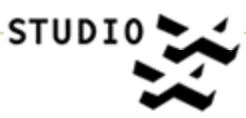
Image from Wayback Machine, September 02, 2004; Screenshot, 2020, Firefox v76.0.1 on Mac OS 10.13.3; https://web.archive.org/web/20040902031540/http://www.studioxx.org:80/
Ada X was founded under the name Studio XX in 1996 by Kim Sawchuck (Ph.D and professor), Patricia Kearns (filmmaker), Kathy Kennedy (sound artist) and Sheryl Hamilton (cybernetic). They imagined a bilingual feminist media arts centre that would be an alternative to traditional institutions and would encourage more women to take part in emerging forms of creative expression offered by the rapid development of the Internet and digital tools. In a context where only a few women used new technologies, Ada X’s founders wanted to establish a support system for feminist engagement in the burgeoning world of “cyberspace” and in the emerging field of media arts. Ada X (x) encouraged women to become “creators” rather than “spectators” by supporting active participation in the production of art and knowledge.
1996, Kim Sawchuck, Patricia Kearns, Kathy Kennedy, and Sheryl Hamilton, https://www.ada-x.org/; excerpt from “Mandate,” Ada X, https://www.ada-x.org/en/about/mandate-history/
Montreal
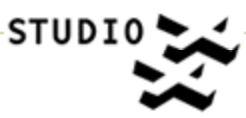
Image from Wayback Machine, September 02, 2004; Screenshot, 2020, Firefox v76.0.1 on Mac OS 10.13.3; https://web.archive.org/web/20040902031540/http://www.studioxx.org:80/
(71)
1996
Nattering on the Net: Women, Power and Cyberspace
Dale Spender
Cyberspace might be a virtual creation, but it is a reality that is here to stay. And my attitude towards it is pragmatic. Given that I have to learn to live with the cyberworld, I want the best possible outcome that can be realized. This means that I want to be involved—along with countless others—in the decision-making process of shaping the information infrastructure. […] Despite the ideal potential of the new technologies to create a global, egalitarian community, a virtual world without barriers or divisions, the scene down on the ground is strikingly different. […] The real people in the real world are being divided up into information-rich (x) and poor: the “master minds” and those who are “kept in the dark.” […] What social policies now need is a cyber-dimension.
1995, Dale Spender (Melbourne: Spinifex Press, 1995); excerpt pp. 249–251
https://www.worldcat.org/title/nattering-on-the-net-women-power-and-cyberspace/oclc/243600592
Cyberspace might be a virtual creation, but it is a reality that is here to stay. And my attitude towards it is pragmatic. Given that I have to learn to live with the cyberworld, I want the best possible outcome that can be realized. This means that I want to be involved—along with countless others—in the decision-making process of shaping the information infrastructure. […] Despite the ideal potential of the new technologies to create a global, egalitarian community, a virtual world without barriers or divisions, the scene down on the ground is strikingly different. […] The real people in the real world are being divided up into information-rich (x) and poor: the “master minds” and those who are “kept in the dark.” […] What social policies now need is a cyber-dimension.
1995, Dale Spender (Melbourne: Spinifex Press, 1995); excerpt pp. 249–251
https://www.worldcat.org/title/nattering-on-the-net-women-power-and-cyberspace/oclc/243600592
(72)
1996
Cyberfeminism
Nancy Paterson
Linking the erotic representation of women with the often terrible cultural impact of new electronic technologies is not a new concept. […] Sex, danger, women and machines: the plot of virtually every futuristic, sci-fi movie in which women play any role at all. (x) Cyberfemmes are everywhere, but cyberfeminists are few and far between. […] Cyberfeminism as a philosophy has the potential to create a poetic, passionate, political identity and unity without relying on a logic and language of exclusion or appropriation. […] New electronic technologies are currently utilized to manipulate and define our experiences. Cyberfeminism does not accept as inevitable current applications of new technologies which impose and maintain specific cultural, political and sexual stereotypes. Empowerment of women in the field of new electronic media can only result from the demystification of technology, and the appropriation of access to these tools. Cyberfeminism is essentially subversive.
1996, Nancy Paterson, Fireweed 54 (Summer 1996): pp. 48–55; excerpt p. 48; referred by Judy Malloy
https://www.are.na/block/7589058 https://www.are.na/block/7589200
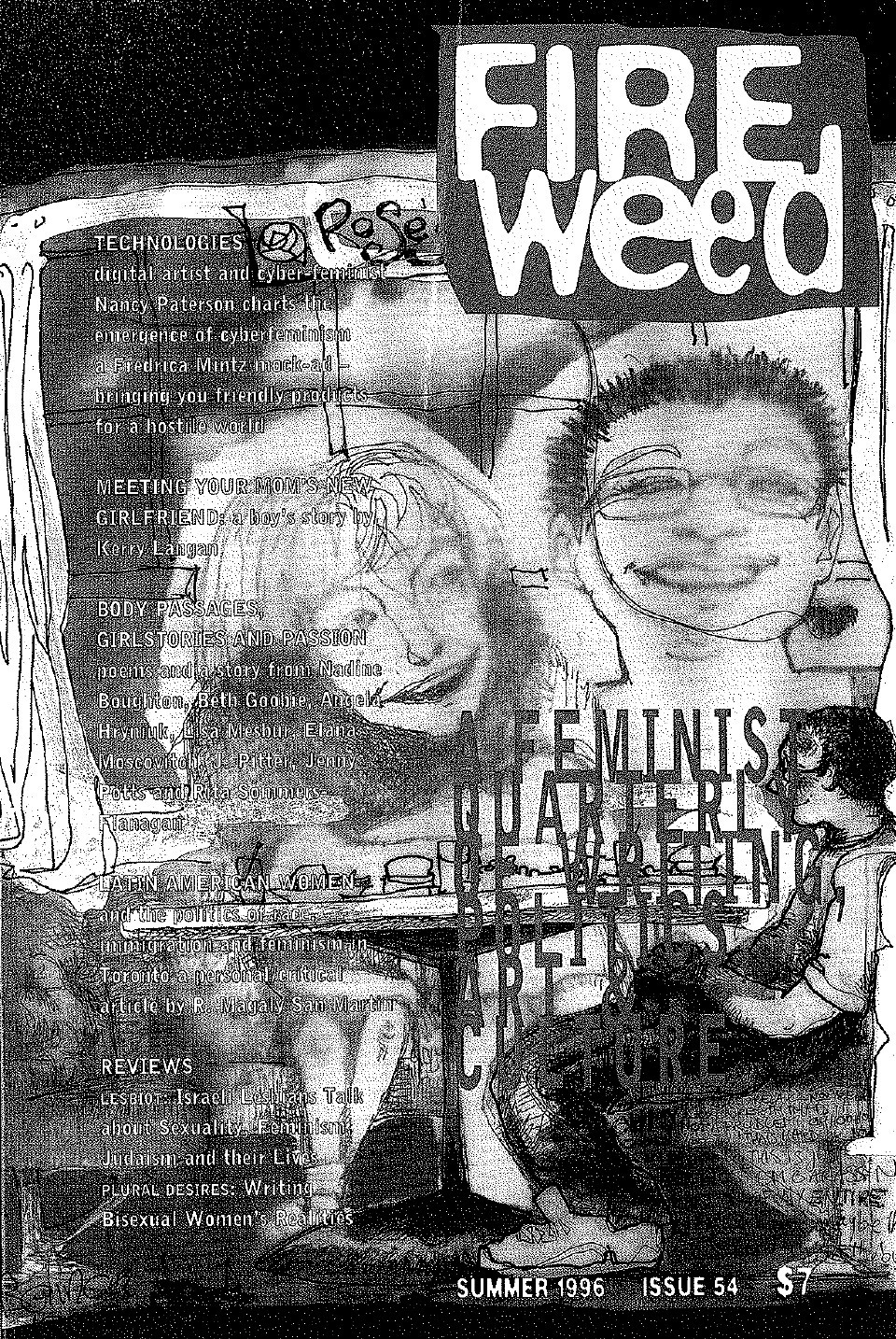
Image from cover of Fireweed PDF, p.1
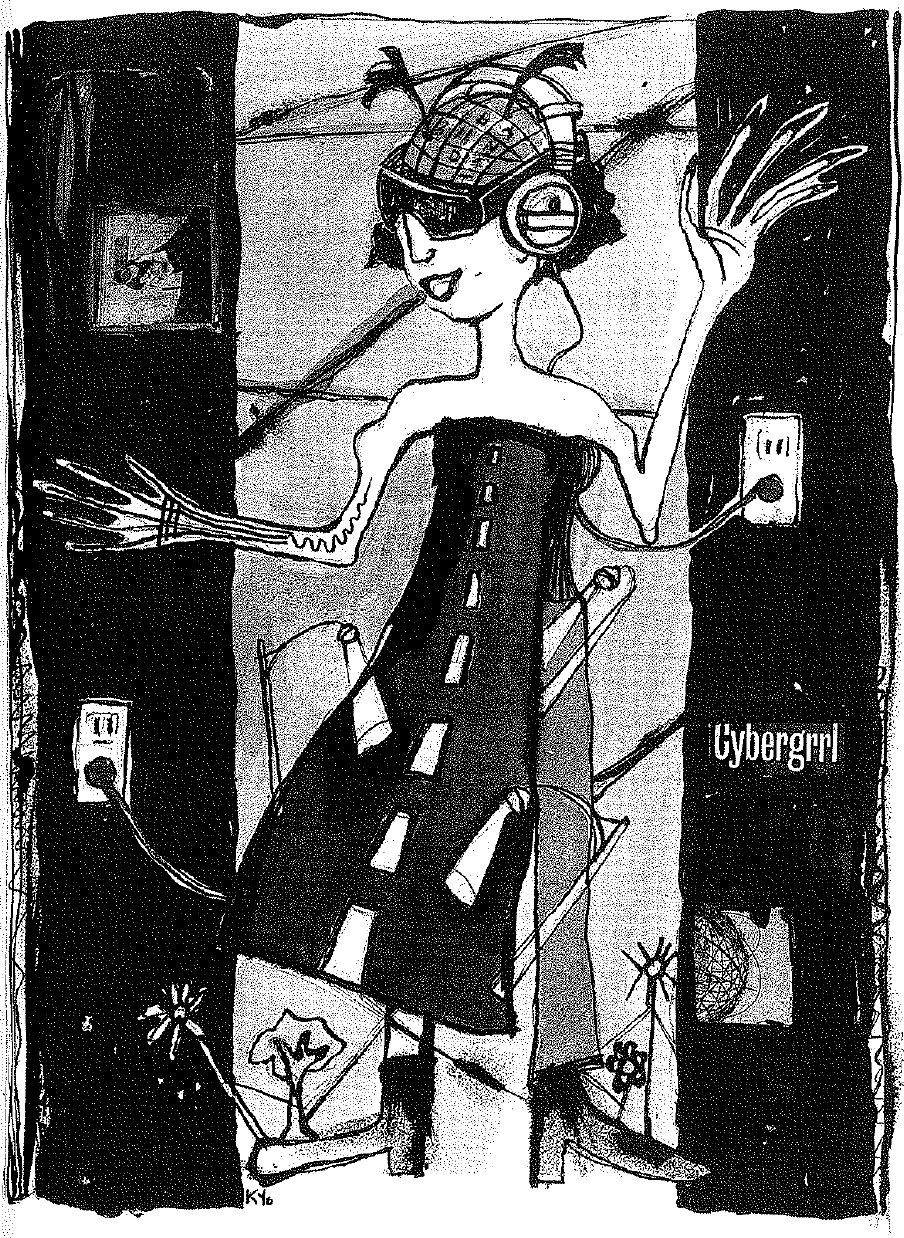
Image from Fireweed PDF, p.3, Illustration by KYO
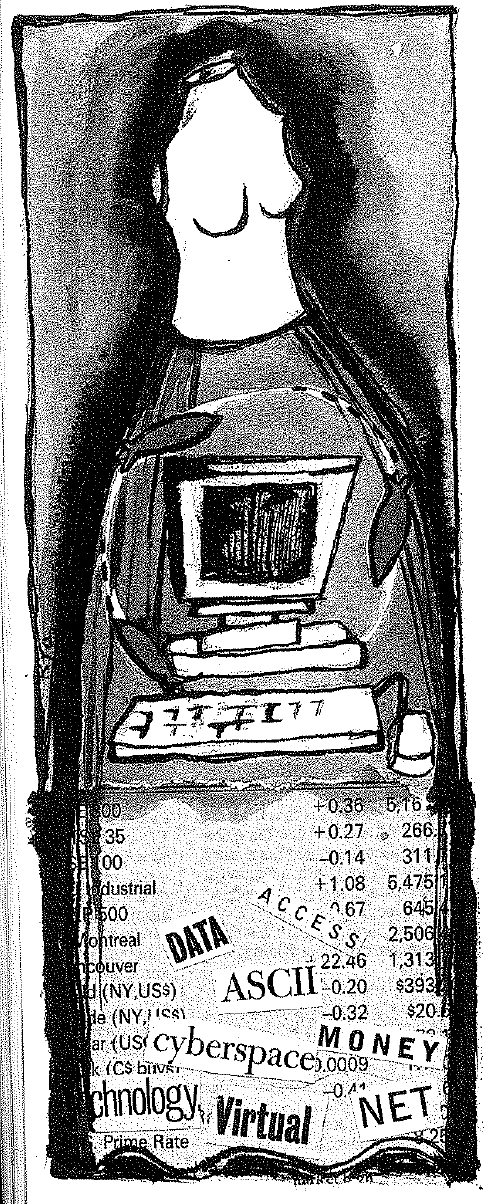
Image from Fireweed PDF, p.5, Illustration by KYO
Linking the erotic representation of women with the often terrible cultural impact of new electronic technologies is not a new concept. […] Sex, danger, women and machines: the plot of virtually every futuristic, sci-fi movie in which women play any role at all. (x) Cyberfemmes are everywhere, but cyberfeminists are few and far between. […] Cyberfeminism as a philosophy has the potential to create a poetic, passionate, political identity and unity without relying on a logic and language of exclusion or appropriation. […] New electronic technologies are currently utilized to manipulate and define our experiences. Cyberfeminism does not accept as inevitable current applications of new technologies which impose and maintain specific cultural, political and sexual stereotypes. Empowerment of women in the field of new electronic media can only result from the demystification of technology, and the appropriation of access to these tools. Cyberfeminism is essentially subversive.
1996, Nancy Paterson, Fireweed 54 (Summer 1996): pp. 48–55; excerpt p. 48; referred by Judy Malloy
https://www.are.na/block/7589058 https://www.are.na/block/7589200
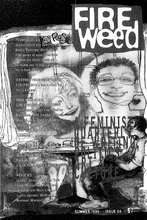
Image from cover of Fireweed PDF, p.1
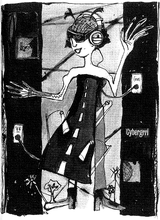
Image from Fireweed PDF, p.3, Illustration by KYO

Image from Fireweed PDF, p.5, Illustration by KYO
(73)
1996
Brutal Myths
Sonya Rapoport, Marie-Jose Sat
This was to be the first of many Web Art works with a feminist perspective. Brutal Myths addresses the sadistic male fantasies about women found in the Malleus Maleficarum (The Hammer of Witches), an infamously misogynistic treatise on witch-hunting published in the 15th century. Because women were traditionally the lay healers of their societies and used herbs (x) in their medicinal practices, Rapoport used representations of herbs as the primary metaphor of this work (this interest in herbal symbolism can be traced back to her 1979 drawing Geothe’s Urpflanz). Beginning with the Biblical story of Eve, Brutal Myths describes the “evil” herbs that contaminated the minds of men and made them believe in the dictums laid forth in the Malleus Maleficarum. Then the participant “plants” a “blissful” garden of “blessed” (x) herbs to destroy prejudicial myths about women.
1996, Sonya Rapoport and Marie-José Sat, http://users.lmi.net/sonyarap/brutal/; excerpt from “Brutal Myths, 1996,” Sonya Rapoport Legacy Trust, http://www.sonyarapoport.org/portfolio/brutal-myths-1996/
http://users.lmi.net/sonyarap/brutal/index.html

Screenshot, 2020, Firefox v76.0.1 on Mac OS 10.13.3; http://users.lmi.net/sonyarap/brutal/index.html

Text artifact from http://users.lmi.net/sonyarap/brutal/index.html

Image artifact from http://users.lmi.net/sonyarap/brutal/index.html
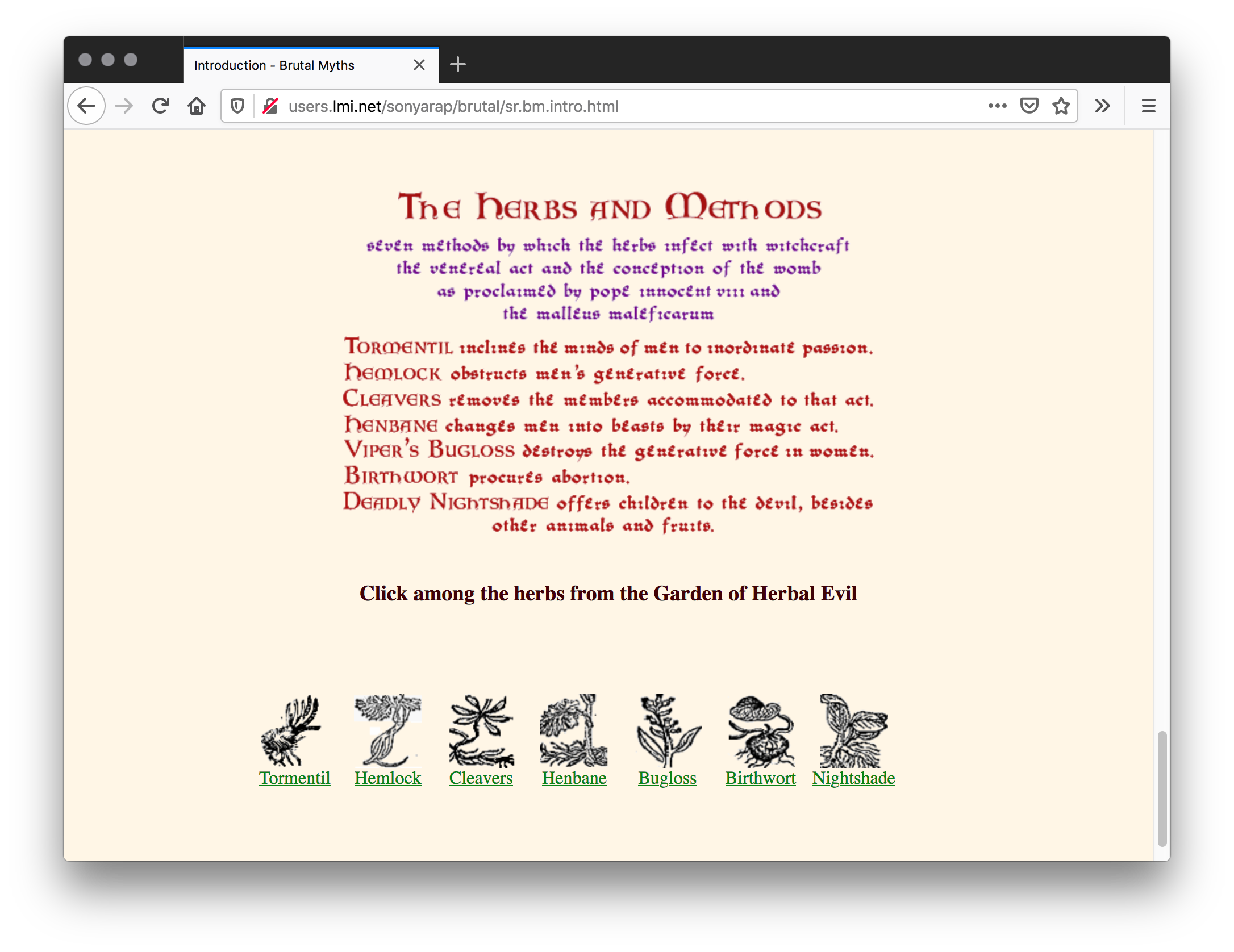
Screenshot, 2020, Firefox v76.0.1 on Mac OS 10.13.3; http://users.lmi.net/sonyarap/brutal/sr.bm.intro.html
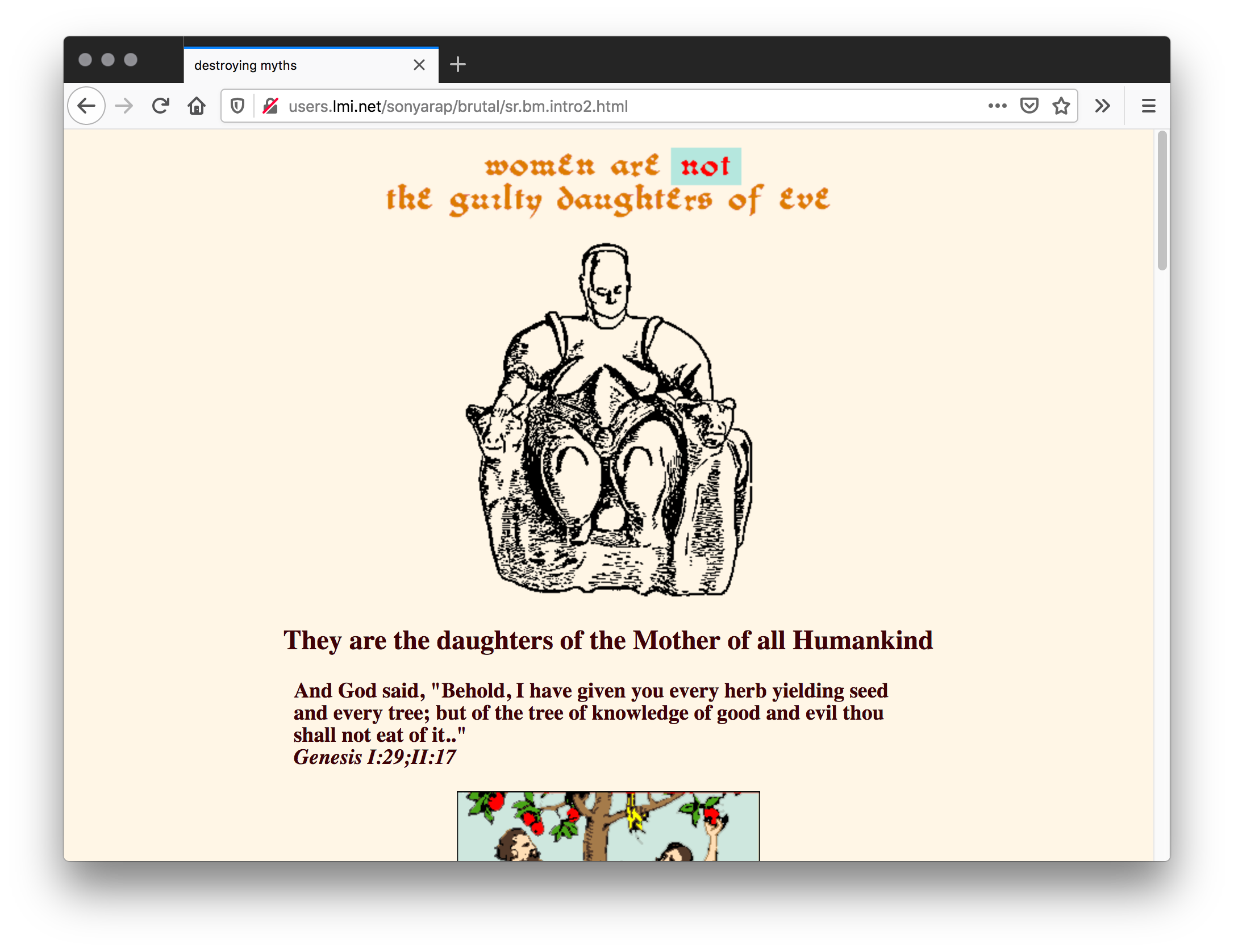
Screenshot, 2020, Firefox v76.0.1 on Mac OS 10.13.3; http://users.lmi.net/sonyarap/brutal/sr.bm.intro2.html

Text artifact from http://users.lmi.net/sonyarap/brutal/sr.bm.intro2.html
This was to be the first of many Web Art works with a feminist perspective. Brutal Myths addresses the sadistic male fantasies about women found in the Malleus Maleficarum (The Hammer of Witches), an infamously misogynistic treatise on witch-hunting published in the 15th century. Because women were traditionally the lay healers of their societies and used herbs (x) in their medicinal practices, Rapoport used representations of herbs as the primary metaphor of this work (this interest in herbal symbolism can be traced back to her 1979 drawing Geothe’s Urpflanz). Beginning with the Biblical story of Eve, Brutal Myths describes the “evil” herbs that contaminated the minds of men and made them believe in the dictums laid forth in the Malleus Maleficarum. Then the participant “plants” a “blissful” garden of “blessed” (x) herbs to destroy prejudicial myths about women.
1996, Sonya Rapoport and Marie-José Sat, http://users.lmi.net/sonyarap/brutal/; excerpt from “Brutal Myths, 1996,” Sonya Rapoport Legacy Trust, http://www.sonyarapoport.org/portfolio/brutal-myths-1996/
http://users.lmi.net/sonyarap/brutal/index.html

Screenshot, 2020, Firefox v76.0.1 on Mac OS 10.13.3; http://users.lmi.net/sonyarap/brutal/index.html

Text artifact from http://users.lmi.net/sonyarap/brutal/index.html

Image artifact from http://users.lmi.net/sonyarap/brutal/index.html
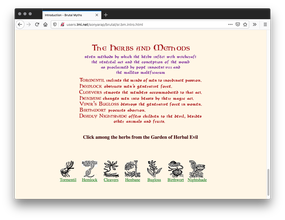
Screenshot, 2020, Firefox v76.0.1 on Mac OS 10.13.3; http://users.lmi.net/sonyarap/brutal/sr.bm.intro.html

Screenshot, 2020, Firefox v76.0.1 on Mac OS 10.13.3; http://users.lmi.net/sonyarap/brutal/sr.bm.intro2.html

Text artifact from http://users.lmi.net/sonyarap/brutal/sr.bm.intro2.html
(74)
1996
On the Matrix: Cyberfeminist Simulations
Sadie Plant
There is no authentic or essential woman up ahead, no self to be reclaimed from some long lost past, nor even a potential subjectivity to be constructed in the present day. Nor is there only an absence or lack. Instead there is a virtual reality, (x) an emergent process for which identity is not the goal but the enemy, precisely what has kept at bay the matrix of potentialities from which women have always downloaded their roles.
After the second comes the next waves, (x) the next sexes, asking for nothing, just taking their time. Inflicted on authority, the wounds proliferate. The replicunts write programs, paint viral images, fabricate weapons systems, infiltrate the arts and the industry. They are hackers, perverting the codes, corrupting the transmissions, multiplying zeros, and teasing open new holes in the world. They are the edge of the new edge, unashamedly opportunist, entirely irresponsible, and committed only to the infiltration and corruption of a world which already rues the day they left home.
1996, Sadie Plant, in The Cybercultures Reader, eds. David Bell and Barbara M. Kennedy (London: Routledge, 2000), pp. 325–326; excerpt p. 325
https://www.are.na/block/7589493 https://uberty.org/wp-content/uploads/2015/09/Sadie-Plant-On-the-Matrix-Cyberfeminist-Simulations.pdf
There is no authentic or essential woman up ahead, no self to be reclaimed from some long lost past, nor even a potential subjectivity to be constructed in the present day. Nor is there only an absence or lack. Instead there is a virtual reality, (x) an emergent process for which identity is not the goal but the enemy, precisely what has kept at bay the matrix of potentialities from which women have always downloaded their roles.
After the second comes the next waves, (x) the next sexes, asking for nothing, just taking their time. Inflicted on authority, the wounds proliferate. The replicunts write programs, paint viral images, fabricate weapons systems, infiltrate the arts and the industry. They are hackers, perverting the codes, corrupting the transmissions, multiplying zeros, and teasing open new holes in the world. They are the edge of the new edge, unashamedly opportunist, entirely irresponsible, and committed only to the infiltration and corruption of a world which already rues the day they left home.
1996, Sadie Plant, in The Cybercultures Reader, eds. David Bell and Barbara M. Kennedy (London: Routledge, 2000), pp. 325–326; excerpt p. 325
https://www.are.na/block/7589493 https://uberty.org/wp-content/uploads/2015/09/Sadie-Plant-On-the-Matrix-Cyberfeminist-Simulations.pdf
(75)
1996–
2018
Museum of Menstruation and Women’s Health
Harry Finley
The main interest of the museum is to permanently display to the public—the important word is “public”—items showing the history of women’s health and of the culture of menstruation. (x) Scholars will be able to see material not on display. It is not designed for people in the “professional” menstruation community, such as activists, but for the average person, male and female, people whose strongest feeling about menstruation is usually negative. […] It will not be a “feel-good” museum, but one showing the facts, pleasant and unpleasant. […] The menstruation section of the Museum of Menstruation and Women’s Health is intended to be the world’s repository for information about, and “showcase” for, menstruation, including as many cultures as possible.
1996, Harry Finley, http://www.mum.org/
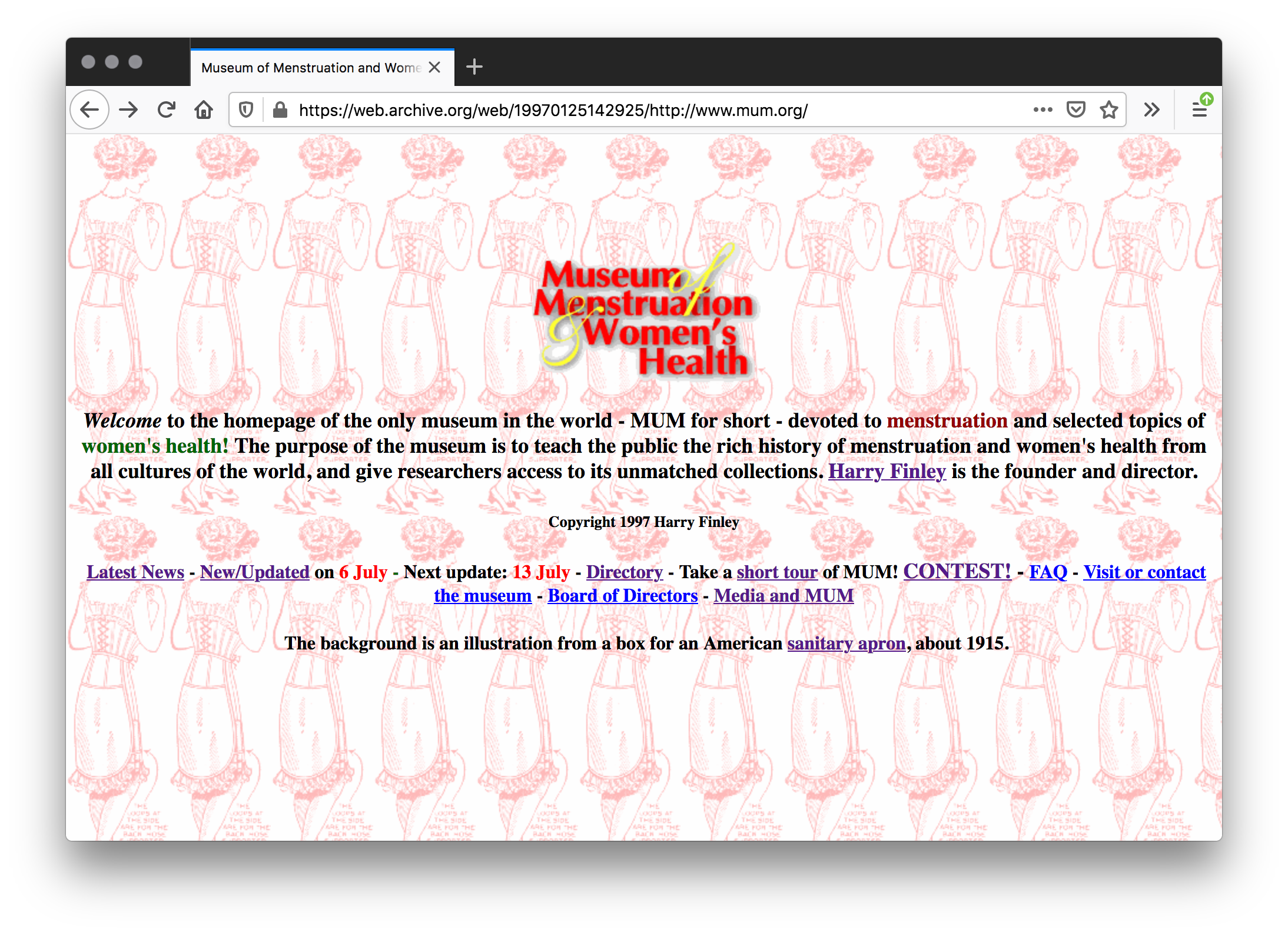
Wayback Machine, January 01, 1997; Screenshot, 2020, Firefox v76.0.1 on Mac OS 10.13.3; https://web.archive.org/web/19970125142925/http://www.mum.org/

Image from Wayback Machine, December 03, 1998; Screenshot, 2020, Firefox v76.0.1 on Mac OS 10.13.3; https://web.archive.org/web/19981203115012/http://www.mum.org:80/director.htm
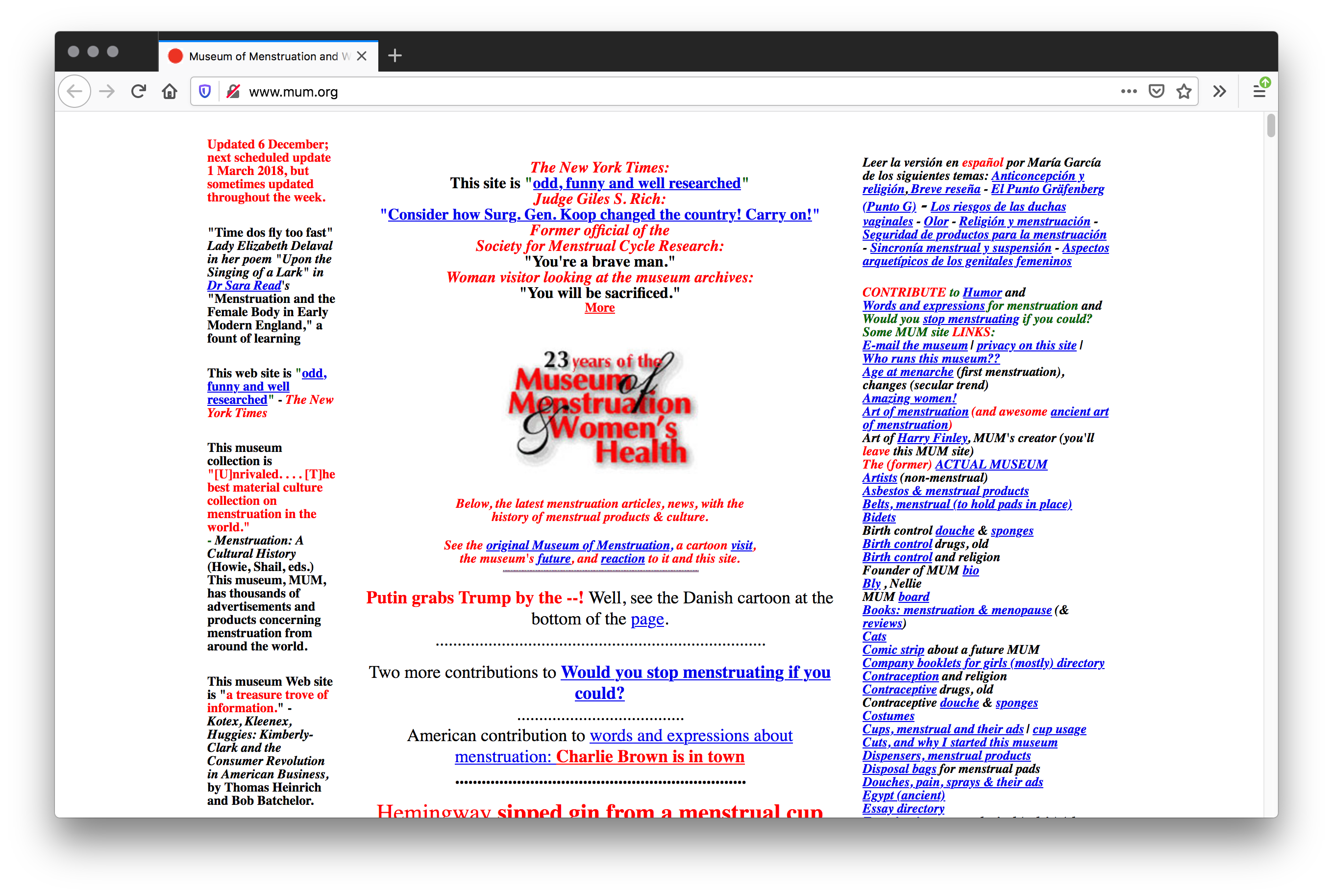
Screenshot, 2020, Firefox v76.0.1 on Mac OS 10.13.3; http://mum.org/

Artifact from http://mum.org/
The main interest of the museum is to permanently display to the public—the important word is “public”—items showing the history of women’s health and of the culture of menstruation. (x) Scholars will be able to see material not on display. It is not designed for people in the “professional” menstruation community, such as activists, but for the average person, male and female, people whose strongest feeling about menstruation is usually negative. […] It will not be a “feel-good” museum, but one showing the facts, pleasant and unpleasant. […] The menstruation section of the Museum of Menstruation and Women’s Health is intended to be the world’s repository for information about, and “showcase” for, menstruation, including as many cultures as possible.
1996, Harry Finley, http://www.mum.org/
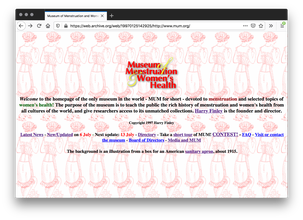
Wayback Machine, January 01, 1997; Screenshot, 2020, Firefox v76.0.1 on Mac OS 10.13.3; https://web.archive.org/web/19970125142925/http://www.mum.org/

Image from Wayback Machine, December 03, 1998; Screenshot, 2020, Firefox v76.0.1 on Mac OS 10.13.3; https://web.archive.org/web/19981203115012/http://www.mum.org:80/director.htm
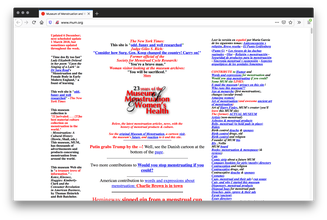
Screenshot, 2020, Firefox v76.0.1 on Mac OS 10.13.3; http://mum.org/

Artifact from http://mum.org/
(76)
1996
Colonial Ventures in Cyberspace
Paul Hertz
In the spring of 1996, as part of a residency in the Departments of Sculpture and Painting at the Universidad Politécnica de Valencia in Valencia, Spain, I curated an on-line exhibition of work by seven artists and critics entitled “The Homestead” (translated as “La Finca” in Castilian Spanish). Created on the World Wide Web as a “colony” in cyberspace, the Homestead (http://omnibus-eye.rtvf.nwu.edu/Homestead/) explores the effects of historical colonization on the technological present and the colonizing effects of technology. “Colonization” (x) is deliberately used here as a provocative term, in opposition to “technotopia”—the idealized vision of technology offered by centers of economic and political power. Colonization implies borders, an “us” and a “them,” a degree of violence. Identity is constructed on colony borders. On the border, objects and persons acquire names, differences are constructed. Only a fraction of the world’s people have a presence in cyberspace: the rest are outsiders. Will the outsiders eventually participate? Will borders and differences persist in cyberspace?
1996, Paul Hertz, Leonardo 30, no. 4 (1997): pp. 249–259; excerpt p. 249
https://www.leonardo.info/gallery/gallery294/hertz.html
In the spring of 1996, as part of a residency in the Departments of Sculpture and Painting at the Universidad Politécnica de Valencia in Valencia, Spain, I curated an on-line exhibition of work by seven artists and critics entitled “The Homestead” (translated as “La Finca” in Castilian Spanish). Created on the World Wide Web as a “colony” in cyberspace, the Homestead (http://omnibus-eye.rtvf.nwu.edu/Homestead/) explores the effects of historical colonization on the technological present and the colonizing effects of technology. “Colonization” (x) is deliberately used here as a provocative term, in opposition to “technotopia”—the idealized vision of technology offered by centers of economic and political power. Colonization implies borders, an “us” and a “them,” a degree of violence. Identity is constructed on colony borders. On the border, objects and persons acquire names, differences are constructed. Only a fraction of the world’s people have a presence in cyberspace: the rest are outsiders. Will the outsiders eventually participate? Will borders and differences persist in cyberspace?
1996, Paul Hertz, Leonardo 30, no. 4 (1997): pp. 249–259; excerpt p. 249
https://www.leonardo.info/gallery/gallery294/hertz.html
(77)
1996
Sweetness and Light
Roshini Kempadoo
The work Sweetness and Light explores some thoughts about cyberspace from the position of someone whose ancestors were subjects of the colonial experience. (x) Like all analogies, although there are some similarities, there are also some fundamental differences. I cannot totally condemn the development of media/cyberspace to a neat and simple comparison. Like all my work, Sweetness and Light needs to be seen as a statement or an experience—for now, it is a description that will be changed, is not fixed and should not be seen or experienced as a definitive expression.
1996, Roshini Kempadoo, https://www.leonardo.info/gallery/gallery294/kempadoo.html
United Kingdom
The work Sweetness and Light explores some thoughts about cyberspace from the position of someone whose ancestors were subjects of the colonial experience. (x) Like all analogies, although there are some similarities, there are also some fundamental differences. I cannot totally condemn the development of media/cyberspace to a neat and simple comparison. Like all my work, Sweetness and Light needs to be seen as a statement or an experience—for now, it is a description that will be changed, is not fixed and should not be seen or experienced as a definitive expression.
1996, Roshini Kempadoo, https://www.leonardo.info/gallery/gallery294/kempadoo.html
United Kingdom
(78)
1996
Private Domain
Rejane Spitz
This work is about those empty hands that are on the fringe of the Web. (x) It is about those words that cannot be translated, about those emotions that cannot be shared and those meanings that cannot be understood by people from other cultures. It is about the richness of human beings living in their different realities, with their own systems of ideas, concepts, rules and meanings.
Who are you? You possibly do not speak my language, do not share my beliefs, do not look like me. But you may come in if you respect my feelings, my logic and my rules. If not, please keep off! This is a private domain. Information is never public or neutral.
1996, Rejane Spitz, https://www.leonardo.info/gallery/gallery294/spitz.html
Brazil
This work is about those empty hands that are on the fringe of the Web. (x) It is about those words that cannot be translated, about those emotions that cannot be shared and those meanings that cannot be understood by people from other cultures. It is about the richness of human beings living in their different realities, with their own systems of ideas, concepts, rules and meanings.
Who are you? You possibly do not speak my language, do not share my beliefs, do not look like me. But you may come in if you respect my feelings, my logic and my rules. If not, please keep off! This is a private domain. Information is never public or neutral.
1996, Rejane Spitz, https://www.leonardo.info/gallery/gallery294/spitz.html
Brazil
(79)
1996
darKcoRe
GashGirl
“[darKcoRe] ... hallucinogens with ben attias” —GashGirl, description from https://web.archive.org/web/20031203224248/https://www.sysx.org/gashgirl/
https://web.archive.org/web/20031216233356/http://www.csun.edu/%7Ehfspc002/gash/index3.html
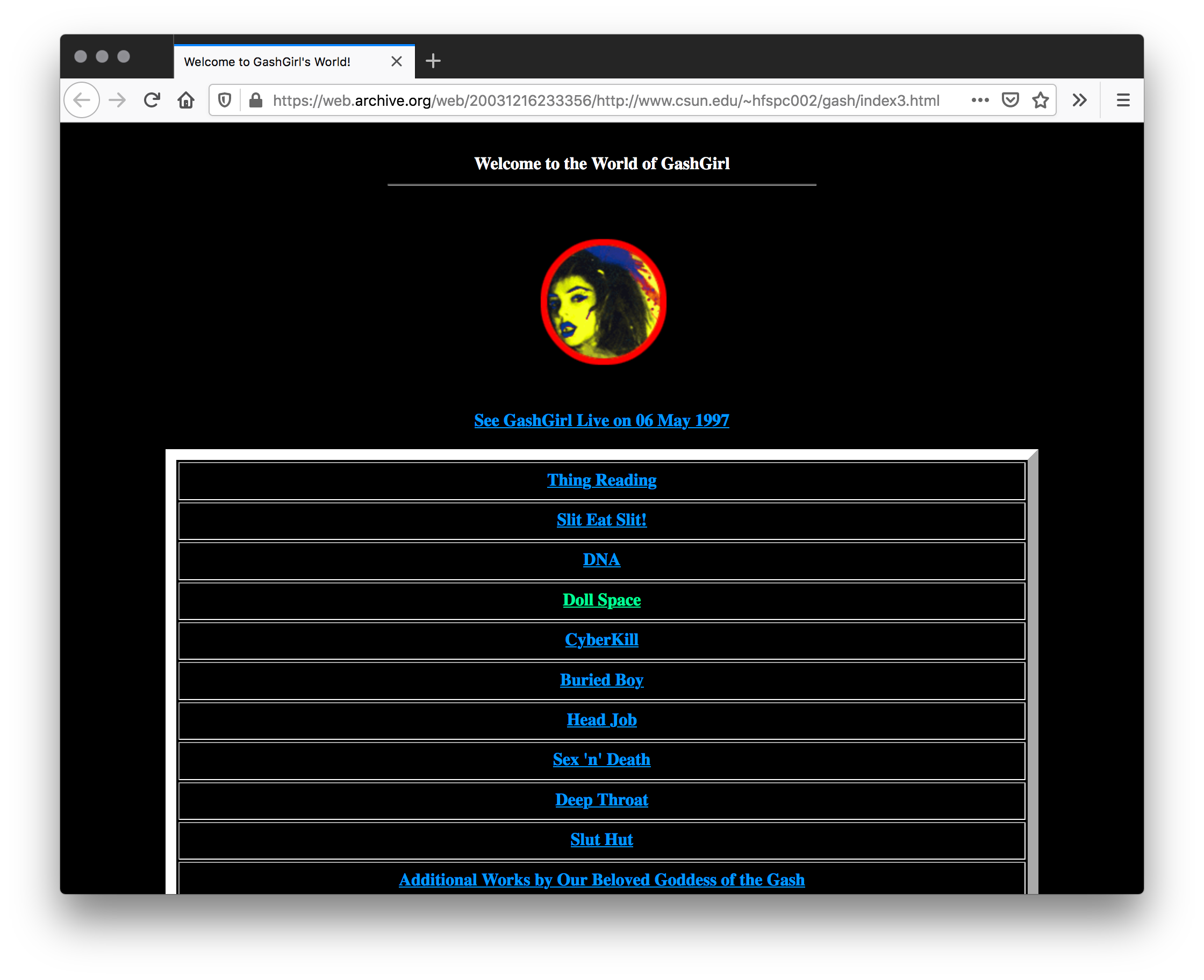
Wayback Machine, December 16, 2003; Screenshot, 2020, Firefox v76.0.1 on Mac OS 10.13.3; https://web.archive.org/web/20031216233356/http://www.csun.edu/%7Ehfspc002/gash/index3.html
“[darKcoRe] ... hallucinogens with ben attias” —GashGirl, description from https://web.archive.org/web/20031203224248/https://www.sysx.org/gashgirl/
https://web.archive.org/web/20031216233356/http://www.csun.edu/%7Ehfspc002/gash/index3.html
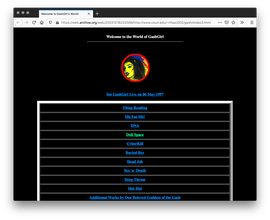
Wayback Machine, December 16, 2003; Screenshot, 2020, Firefox v76.0.1 on Mac OS 10.13.3; https://web.archive.org/web/20031216233356/http://www.csun.edu/%7Ehfspc002/gash/index3.html
(80)
1996
GenderFuckMeBaby’s Palace of Unparalleled Cynicism
GashGirl
IN SPIRALSPACE THERE IS NO THEY there is only us
a bunch of dumb agents forever crawling over
the de sadian co-ordinates prosaic swarmware
on the dole masquerading as a rogue codes
seeking a good time
:Madame.de.Clairwil exclaims, “Beg for it, my divine slut!”
as she positions her magnificent ass over B’s gaping mouth:
trying to flee the binary (x) i enter the gender which is not one
XXYXXYXXYXXYXXXYXXYXXYXYYXXXYYYYXXXXYXYXXYXXYXXYXXXYCCC
neva thought i was the type to fuck a testosterone-enhanced spivak …
but
luscious cunt exuded musk, i couldn’t resist
the day they put the stench into sighberspace remains my favorite
1996, GashGirl, (x) https://web.archive.org/web/20031205183820/http://www.altx.com/dd/gashgirl.html
IN SPIRALSPACE THERE IS NO THEY there is only us
a bunch of dumb agents forever crawling over
the de sadian co-ordinates prosaic swarmware
on the dole masquerading as a rogue codes
seeking a good time
:Madame.de.Clairwil exclaims, “Beg for it, my divine slut!”
as she positions her magnificent ass over B’s gaping mouth:
trying to flee the binary (x) i enter the gender which is not one
XXYXXYXXYXXYXXXYXXYXXYXYYXXXYYYYXXXXYXYXXYXXYXXYXXXYCCC
neva thought i was the type to fuck a testosterone-enhanced spivak …
but
luscious cunt exuded musk, i couldn’t resist
the day they put the stench into sighberspace remains my favorite
1996, GashGirl, (x) https://web.archive.org/web/20031205183820/http://www.altx.com/dd/gashgirl.html
(81)
1996
The Contested Zone: Cybernetics, Feminism and Representation
Kay Schaffer
Contemporary science fiction is replete with cyborgs—technological organisms which are both and neither human and machine. Traditionally the world of technology has been identified as a man’s world, one in which he exercises his fantasies of control over cultural (re)production. More recently, however, there has been a renewed feminist interest, inspired by the work of Donna Haraway, (x) Sadie Plant, (x) Sandy Stone, (x) Linda Dement (x) and Zoë Sofoulis. (x) Linda Dement comments that: “the computer is the prized toy of our essentially male culture. To use technologies which are really intended for a clean slick commercial boy’s world, to make personal, bodily, feminine work, and to re-inscribe this work into mainstream culture, into art discourse and into society, is a political act.”
1996, Kay Schaffer, Journal of Australian Studies 20, nos. 50–51 (1996): pp. 157–164; excerpt p. 157; quotation from Linda Dement, "Artist's Statement about Typhoid Mary," in Working with New Imaging Technologies (Melbourne: National Gallery of Victoria, 1995), p. 30
https://web.archive.org/web/20031205151849/http://www.lamp.ac.uk/oz/schaffer.html
Contemporary science fiction is replete with cyborgs—technological organisms which are both and neither human and machine. Traditionally the world of technology has been identified as a man’s world, one in which he exercises his fantasies of control over cultural (re)production. More recently, however, there has been a renewed feminist interest, inspired by the work of Donna Haraway, (x) Sadie Plant, (x) Sandy Stone, (x) Linda Dement (x) and Zoë Sofoulis. (x) Linda Dement comments that: “the computer is the prized toy of our essentially male culture. To use technologies which are really intended for a clean slick commercial boy’s world, to make personal, bodily, feminine work, and to re-inscribe this work into mainstream culture, into art discourse and into society, is a political act.”
1996, Kay Schaffer, Journal of Australian Studies 20, nos. 50–51 (1996): pp. 157–164; excerpt p. 157; quotation from Linda Dement, "Artist's Statement about Typhoid Mary," in Working with New Imaging Technologies (Melbourne: National Gallery of Victoria, 1995), p. 30
https://web.archive.org/web/20031205151849/http://www.lamp.ac.uk/oz/schaffer.html
(82)
1996
Bodies Incorporated
Victoria Vesna
Bodies INCorporated is a project that actively incorporates the idea of avatars, with the intention of shifting the discourse of the body from the usual idea of flesh and identity. It is planned to have a number of artificial intelligence programs integrated into the environment over which there wouldn’t be too much control. An avatar (x) IS, but a is made, and frequently the force, energy, purpose or will of a corporate Entity will utilize the vehicles of a member in order to contact the physical planes. Every members’ Body represented is the locus of the contradictions of functioning in the hi-tech environment, while being in the Meta-Body, the Entity in the business of service.
1996, Victoria Vesna; excerpt from “Project Description,” Bodies INCorporated, http://www.bodiesinc.ucla.edu/frames1.html

image artifact from homepage http://www.bodiesinc.ucla.edu/frames1.html
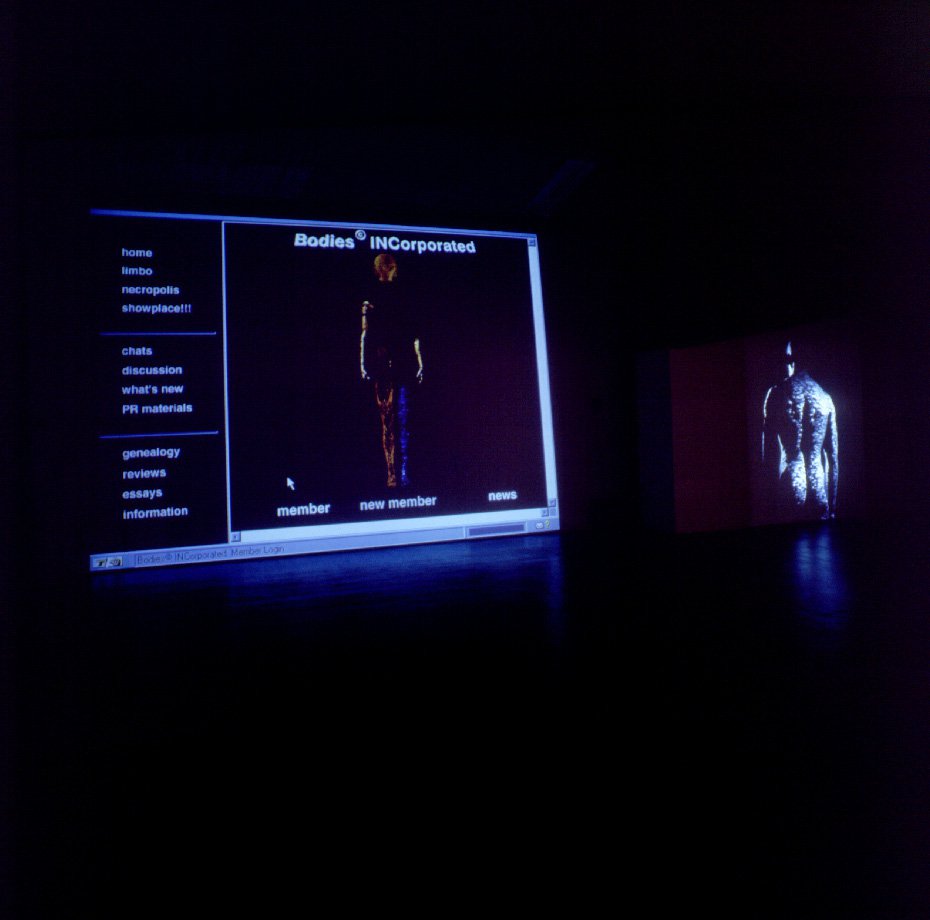
artifact “002. sfai2.jpeg“ from PR Materials page on http://www.bodiesinc.ucla.edu/frames1.html
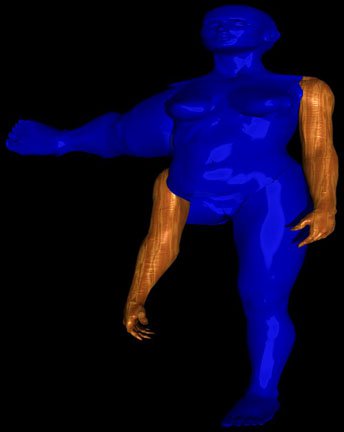
artifact “006. fatalberta.jpeg“ from PR Materials page on http://www.bodiesinc.ucla.edu/frames1.html
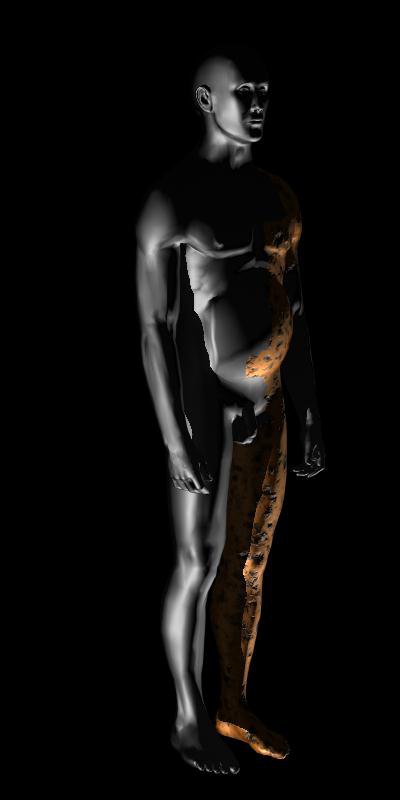
artifact “028. male_pregnant.jpeg“ from PR Materials page on http://www.bodiesinc.ucla.edu/frames1.html
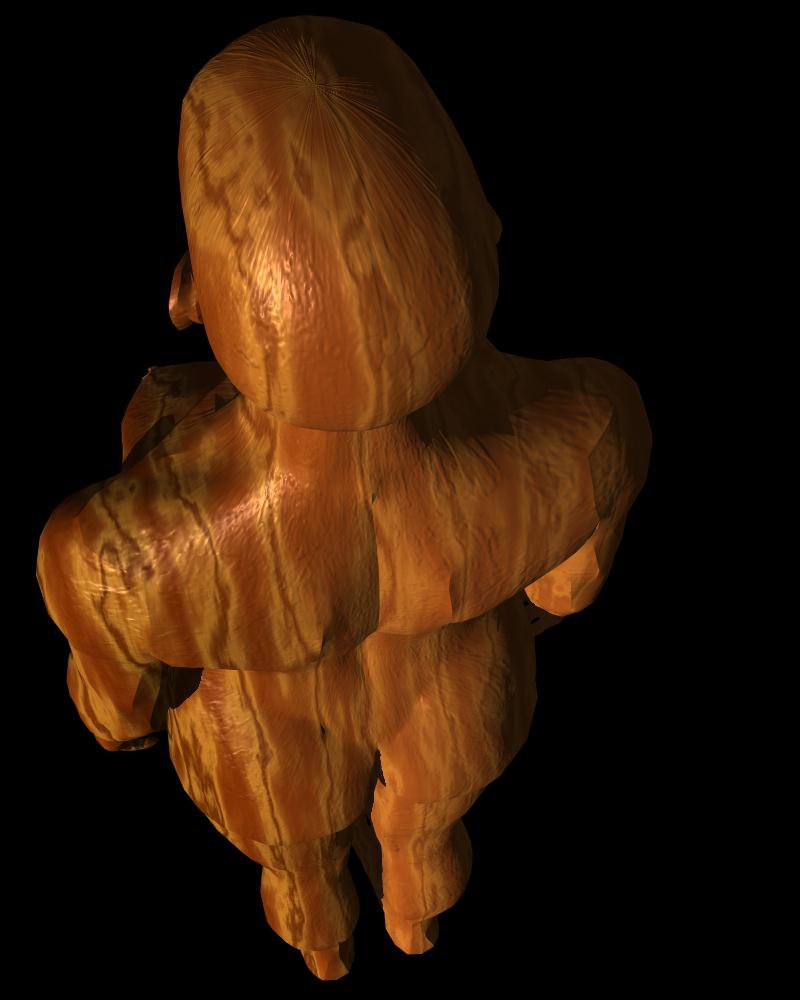
artifact “035. wood_woman.jpeg“ from PR Materials page on http://www.bodiesinc.ucla.edu/frames1.html
Bodies INCorporated is a project that actively incorporates the idea of avatars, with the intention of shifting the discourse of the body from the usual idea of flesh and identity. It is planned to have a number of artificial intelligence programs integrated into the environment over which there wouldn’t be too much control. An avatar (x) IS, but a is made, and frequently the force, energy, purpose or will of a corporate Entity will utilize the vehicles of a member in order to contact the physical planes. Every members’ Body represented is the locus of the contradictions of functioning in the hi-tech environment, while being in the Meta-Body, the Entity in the business of service.
1996, Victoria Vesna; excerpt from “Project Description,” Bodies INCorporated, http://www.bodiesinc.ucla.edu/frames1.html
image artifact from homepage http://www.bodiesinc.ucla.edu/frames1.html
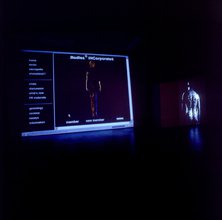
artifact “002. sfai2.jpeg“ from PR Materials page on http://www.bodiesinc.ucla.edu/frames1.html

artifact “006. fatalberta.jpeg“ from PR Materials page on http://www.bodiesinc.ucla.edu/frames1.html

artifact “028. male_pregnant.jpeg“ from PR Materials page on http://www.bodiesinc.ucla.edu/frames1.html

artifact “035. wood_woman.jpeg“ from PR Materials page on http://www.bodiesinc.ucla.edu/frames1.html
(83)
1996
An Interview with Sadie Plant and Linda Dement
Sadie Plant, Linda Dement
Linda Dement: (x) One of the things I have been looking at recently is female murderers, female serial killers. […] There have always been women murderers, but in the past they would do it at home and now they are tending to go out and kill men on the streets. So there is this perception that women are more dangerous now, but actually we are more out in the world. We are more visible. We are more public.
Sadie Plant: (x) I would ever so much agree with that. In my book the message is a little more subtle […] One of the approaches I am taking is to re-write the history of computing. I actually started off to do as a sort of draw-out of the influence women have had on computing, thinking that it was quite small and minimal when I started, but in fact the more work I’ve done on this, I have become really convinced that in fact that computing has been built almost lot sack and barrel by women. All of the machinery that feeds into it, for example the typewriter, telephone, calculating machines, everything has always been operated by women. […] That’s why it’s such an overwhelming threat, that really pulls the rug from under the feet of the existing set-up.
1996, Sadie Plant and Linda Dement, interview by Miss. M, Virtual Futures 96 Datableed, Winchester University, Coventry, UK, May 3–5, 1996, transcript, Zero News Datapool, http://www.t0.or.at/sadie/intervw.htm
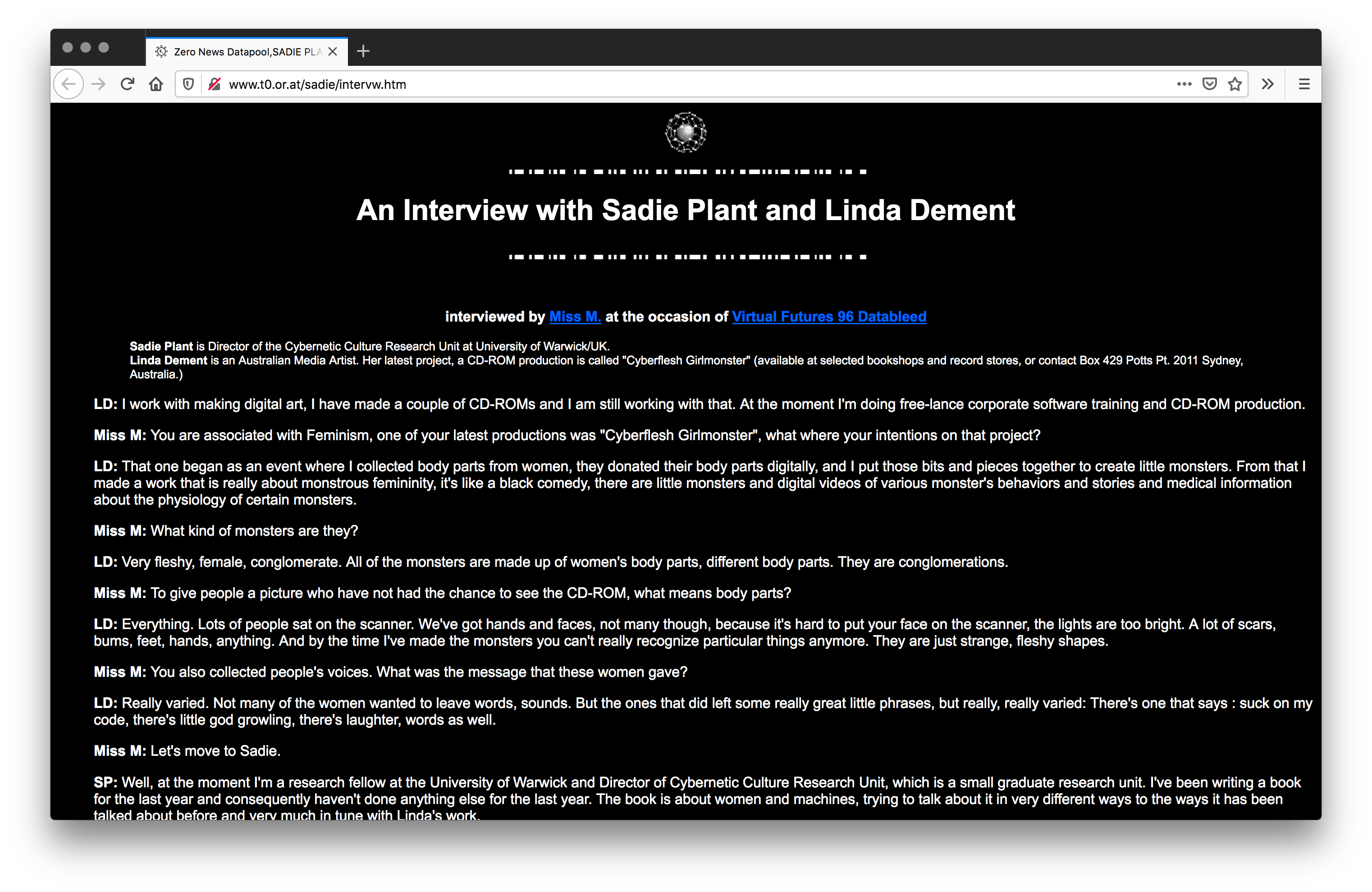
Screenshot, 2020, Firefox v76.0.1 on Mac OS 10.13.3; http://www.t0.or.at/sadie/intervw.htm

artifact from http://www.t0.or.at/sadie/intervw.htm
Linda Dement: (x) One of the things I have been looking at recently is female murderers, female serial killers. […] There have always been women murderers, but in the past they would do it at home and now they are tending to go out and kill men on the streets. So there is this perception that women are more dangerous now, but actually we are more out in the world. We are more visible. We are more public.
Sadie Plant: (x) I would ever so much agree with that. In my book the message is a little more subtle […] One of the approaches I am taking is to re-write the history of computing. I actually started off to do as a sort of draw-out of the influence women have had on computing, thinking that it was quite small and minimal when I started, but in fact the more work I’ve done on this, I have become really convinced that in fact that computing has been built almost lot sack and barrel by women. All of the machinery that feeds into it, for example the typewriter, telephone, calculating machines, everything has always been operated by women. […] That’s why it’s such an overwhelming threat, that really pulls the rug from under the feet of the existing set-up.
1996, Sadie Plant and Linda Dement, interview by Miss. M, Virtual Futures 96 Datableed, Winchester University, Coventry, UK, May 3–5, 1996, transcript, Zero News Datapool, http://www.t0.or.at/sadie/intervw.htm
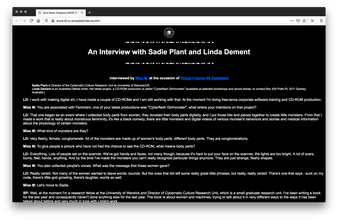
Screenshot, 2020, Firefox v76.0.1 on Mac OS 10.13.3; http://www.t0.or.at/sadie/intervw.htm

artifact from http://www.t0.or.at/sadie/intervw.htm
(84)
1996
Binary Sexes, Binary Codes
Sadie Plant
Communication once proceeded between clear nodal points. Messages were taken from A to B, first by their messengers, and then by means of the telegraph, the telephone and the radio. A and B have always been those with something to say or write. In the modern world, this has tended to be men. Women have functioned as the messengers, and even as the messages themselves. […]
Patriarchy is not a construction, an order, or a structure. These are all representations of an economy, a system in which woman functions as currency, and commodity; medium, means, and material base. She exists “only as the possibility of mediation, transaction, transition, transference—between man and his fellow-creatures, indeed between man and himself.” Woman is the go-between, (x) the in-between man, the one who takes his messages, decrypts his codes, counts his numbers, bears his children and passes on his genetic code. She is the medium, the tool, the first commodity of a specular economy whose circuits are the definition of patriarchy.
1996, Sadie Plant, Zero News Datapool, http://www.t0.or.at/sadie/binary.htm
Communication once proceeded between clear nodal points. Messages were taken from A to B, first by their messengers, and then by means of the telegraph, the telephone and the radio. A and B have always been those with something to say or write. In the modern world, this has tended to be men. Women have functioned as the messengers, and even as the messages themselves. […]
Patriarchy is not a construction, an order, or a structure. These are all representations of an economy, a system in which woman functions as currency, and commodity; medium, means, and material base. She exists “only as the possibility of mediation, transaction, transition, transference—between man and his fellow-creatures, indeed between man and himself.” Woman is the go-between, (x) the in-between man, the one who takes his messages, decrypts his codes, counts his numbers, bears his children and passes on his genetic code. She is the medium, the tool, the first commodity of a specular economy whose circuits are the definition of patriarchy.
1996, Sadie Plant, Zero News Datapool, http://www.t0.or.at/sadie/binary.htm
(85)
1996
Asian Pacific Women’s Information Network Center (APWINC)
Sookmyung Women’s University
Asian Pacific Women’s Information Network Center (APWINC)
APWINC was established on November 1996 at Sookmyung Women’s University, and aims at promoting women’s informatization and women-related communication technologies in the Asia Pacific region, focusing on South Korea (x) and North Korea. For this purpose, APWINC provides the web based women and ICT (Information and Communication Technology). It promotes ICT educational training at three levels: dissemination, specialization and globalization. Dissemination is the promotion of basic computer skills; Specialization is the development of expertise in ICT skills; and Globalization is the international and regional networking through training workshops.
1996, Sookmyung Women’s University, https://web.archive.org/web/20030707014648/http://www.women.or.kr/ehome/introduction.html
South Korea
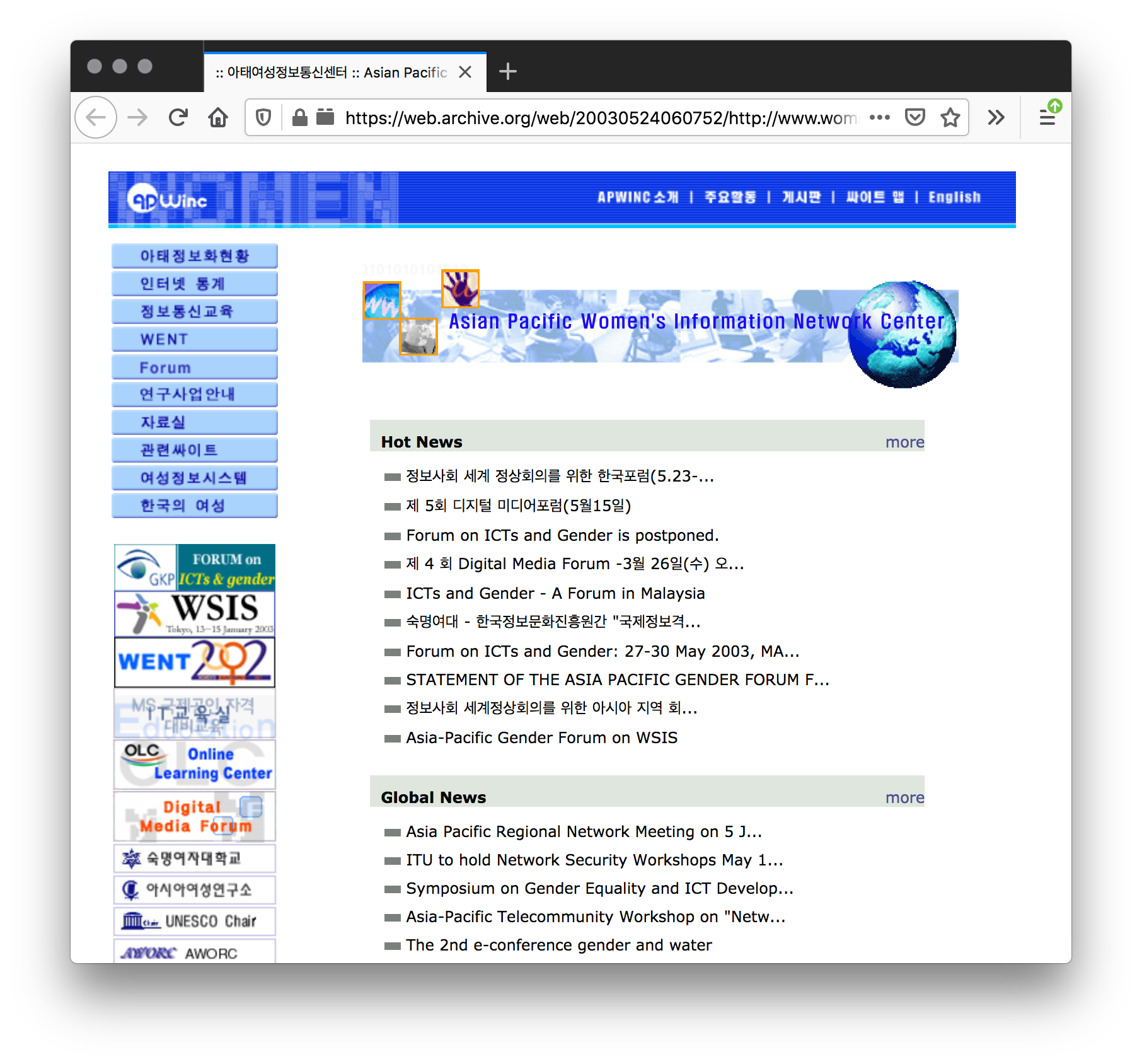
Wayback Machine, May 24, 2003; Screenshot, 2020, Firefox v76.0.1 on Mac OS 10.13.3; https://web.archive.org/web/20030524060752/http://www.women.or.kr/
Asian Pacific Women’s Information Network Center (APWINC)
APWINC was established on November 1996 at Sookmyung Women’s University, and aims at promoting women’s informatization and women-related communication technologies in the Asia Pacific region, focusing on South Korea (x) and North Korea. For this purpose, APWINC provides the web based women and ICT (Information and Communication Technology). It promotes ICT educational training at three levels: dissemination, specialization and globalization. Dissemination is the promotion of basic computer skills; Specialization is the development of expertise in ICT skills; and Globalization is the international and regional networking through training workshops.
1996, Sookmyung Women’s University, https://web.archive.org/web/20030707014648/http://www.women.or.kr/ehome/introduction.html
South Korea
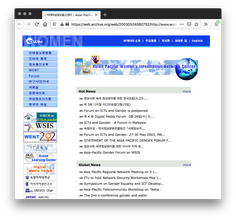
Wayback Machine, May 24, 2003; Screenshot, 2020, Firefox v76.0.1 on Mac OS 10.13.3; https://web.archive.org/web/20030524060752/http://www.women.or.kr/
(86)
1996
Canadian Women’s Internet Association
The Canadian Women’s Internet Association was founded to give all women both a voice and a place of their own in Cyberspace. We are here to ensure that women feel welcome and comfortable on the Internet.
This Web site serves as a resource center and meeting place for Canadian women. Our Information Resource Centre (x) contains hundreds of links to sites relevant to women, with a special focus on Canadian content. Our interactive guestbook allows you to meet other women or speak your mind on the Web.
1996, https://web.archive.org/web/20020121151920/http://herplace.org/
Canada
The Canadian Women’s Internet Association was founded to give all women both a voice and a place of their own in Cyberspace. We are here to ensure that women feel welcome and comfortable on the Internet.
This Web site serves as a resource center and meeting place for Canadian women. Our Information Resource Centre (x) contains hundreds of links to sites relevant to women, with a special focus on Canadian content. Our interactive guestbook allows you to meet other women or speak your mind on the Web.
1996, https://web.archive.org/web/20020121151920/http://herplace.org/
Canada
(87)
1996–
2000
Open Women Line
Программа “Open Women Line” (OWL) направлена на создание в России социально-просветительского Интернет-ресурса для женщин с целью содействовать расширению свободного доступа для женщин к новым источникам информации и развитию информационного обмена между женскими организациями как внутри России, так и на международном уровне.
Program Open Women Line (OWL) in Russia is aimed at creating a social-information (x) Internet-resource for women to easily access new information resources and development of information exchanges between women’s organizations in Russia, as well as on an international level.
1996, https://web.archive.org/web/20011129130634/http://www.owl.ru/
Russia
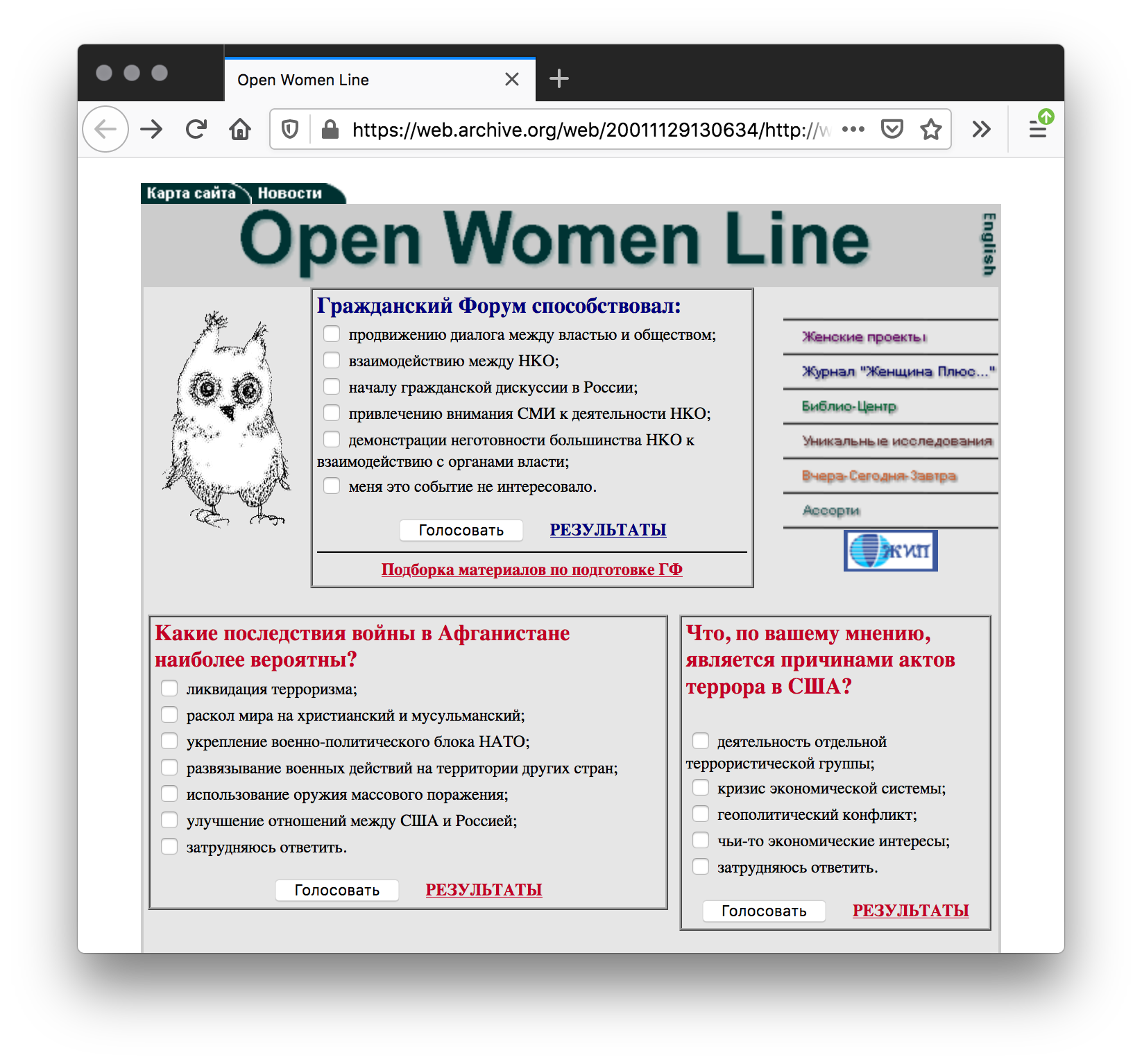
Wayback Machine, November 29, 2001, Screenshot, 2020, Firefox v76.0.1 on Mac OS 10.13.3; https://web.archive.org/web/20011129130634/http://www.owl.ru/
Программа “Open Women Line” (OWL) направлена на создание в России социально-просветительского Интернет-ресурса для женщин с целью содействовать расширению свободного доступа для женщин к новым источникам информации и развитию информационного обмена между женскими организациями как внутри России, так и на международном уровне.
Program Open Women Line (OWL) in Russia is aimed at creating a social-information (x) Internet-resource for women to easily access new information resources and development of information exchanges between women’s organizations in Russia, as well as on an international level.
1996, https://web.archive.org/web/20011129130634/http://www.owl.ru/
Russia
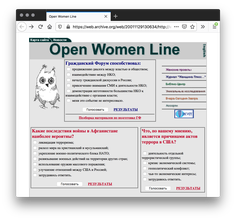
Wayback Machine, November 29, 2001, Screenshot, 2020, Firefox v76.0.1 on Mac OS 10.13.3; https://web.archive.org/web/20011129130634/http://www.owl.ru/
(88)
1996
Cyberfeminism with a Difference
Rosi Braidotti
We rather need more complexity, multiplicity, simultaneity and we need to rethink gender, class and race in the pursuit of these multiple, complex differences. […] As the Manifesto of the Bad Girls reads: “Through laughter our anger becomes a tool of liberation.” In the hope that our collectively negotiated Dionysian laughter will indeed bury it once and for all, cyber-feminism needs to cultivate a culture of joy and affirmation. Feminist women have a long history of dancing through a variety of potentially lethal mine-fields in their pursuit of socio-symbolic justice. Nowadays, women have to undertake the dance through cyberspace, if only to make sure that the joy-sticks of the cyberspace cowboys will not reproduce univocal phallicity under the mask of multiplicity, and also to make sure that the riot girls, in their anger (x) and their visionary passion, will not recreate law and order under the cover of a triumphant feminine.
1996, Rosi Braidotti, New Formations, no. 29 (1996): pp. 9–25; excerpt p. 24
https://web.archive.org/web/20040611162905/http://www.let.uu.nl/womens_studies/rosi/cyberfem.htm
We rather need more complexity, multiplicity, simultaneity and we need to rethink gender, class and race in the pursuit of these multiple, complex differences. […] As the Manifesto of the Bad Girls reads: “Through laughter our anger becomes a tool of liberation.” In the hope that our collectively negotiated Dionysian laughter will indeed bury it once and for all, cyber-feminism needs to cultivate a culture of joy and affirmation. Feminist women have a long history of dancing through a variety of potentially lethal mine-fields in their pursuit of socio-symbolic justice. Nowadays, women have to undertake the dance through cyberspace, if only to make sure that the joy-sticks of the cyberspace cowboys will not reproduce univocal phallicity under the mask of multiplicity, and also to make sure that the riot girls, in their anger (x) and their visionary passion, will not recreate law and order under the cover of a triumphant feminine.
1996, Rosi Braidotti, New Formations, no. 29 (1996): pp. 9–25; excerpt p. 24
https://web.archive.org/web/20040611162905/http://www.let.uu.nl/womens_studies/rosi/cyberfem.htm
(89)
1996
Isi-pîkiskwêwin-Ayapihkêsîsak (Speaking the Language of Spiders)
Cheryl L’Hirondelle, Ahasiw Maskegon-Iskwew, Joseph Naytowhow
In 1996, Joseph and I once again joined Ahasiw and a group of other artists he had assembled at The Banff Centre (x) to collaborate and create the seminal website Isi-pîkiskwêwin-Ayapihkêsîsak (Speaking the Language of Spiders). This all coincided with the burgeoning of the World Wide Web: the public distribution of web browser software such as Netscape, early search engines such Inktomi and the Canadian government’s awareness to create opportunities in remote and rural communities via their Community Access Program (cap). By 1998, I was ready to take the challenge and run with these new ways to publish our stories using this new delivery platform with its own many layers of codes.
1996, Cheryl L’Hirondelle, Ahasiw Maskegon-Iskwew, and Joseph Naytowhow, https://lovingthespider.net/; excerpt from Cheryl L’Hirondelle, “Codetalkers Recounting Signals of Survival,” (x) in Coded Territories: Tracing Indigenous Pathways in New Media Art, eds. Steve Loft and Kerry Swanson (Calgary: University of Calgary Press, 2014), pp. 149–150
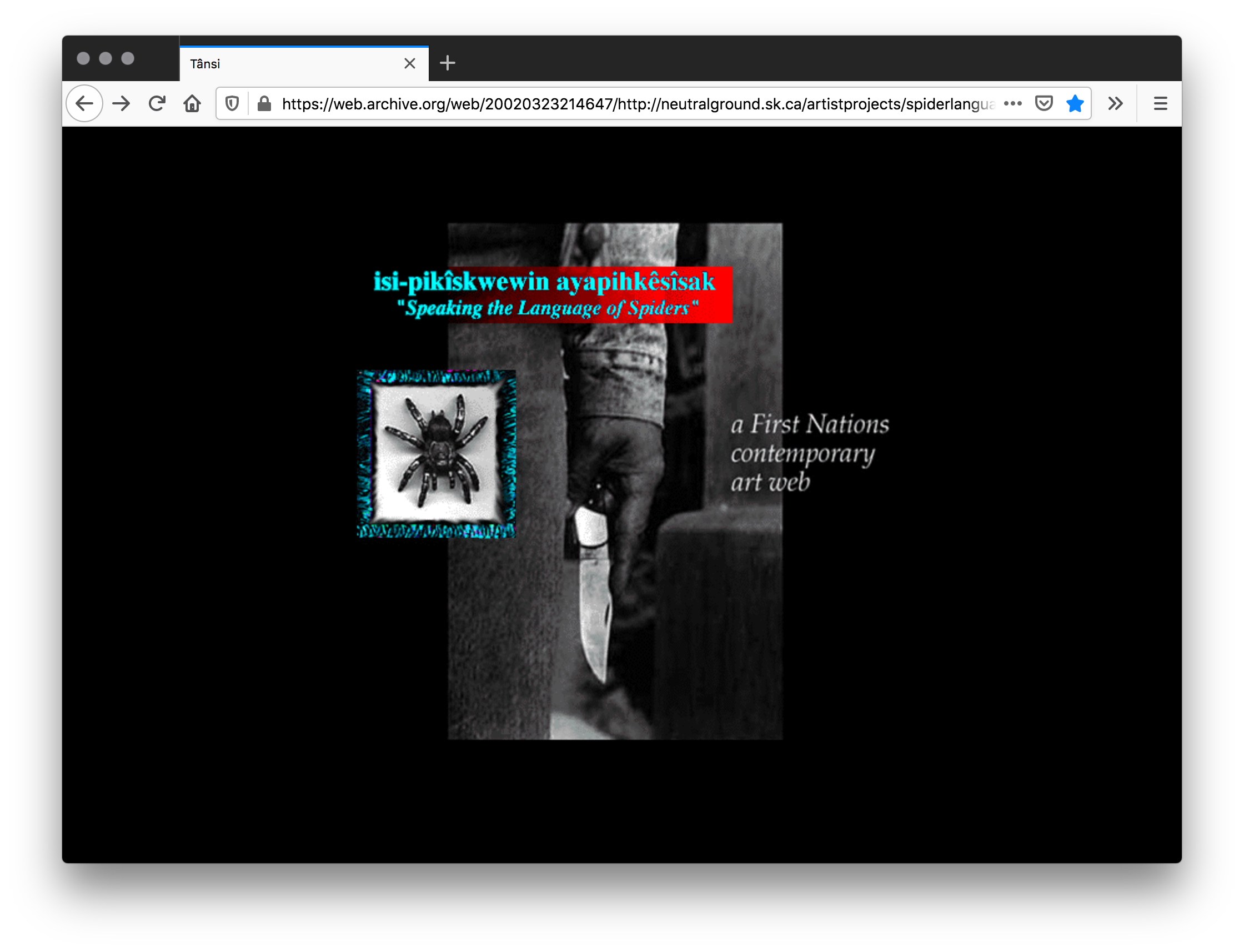
Screenshot, 2020, Firefox v76.0.1 on Mac OS 10.13.3; https://web.archive.org/web/20020323214647/http://neutralground.sk.ca/artistprojects/spiderlanguage/index.html
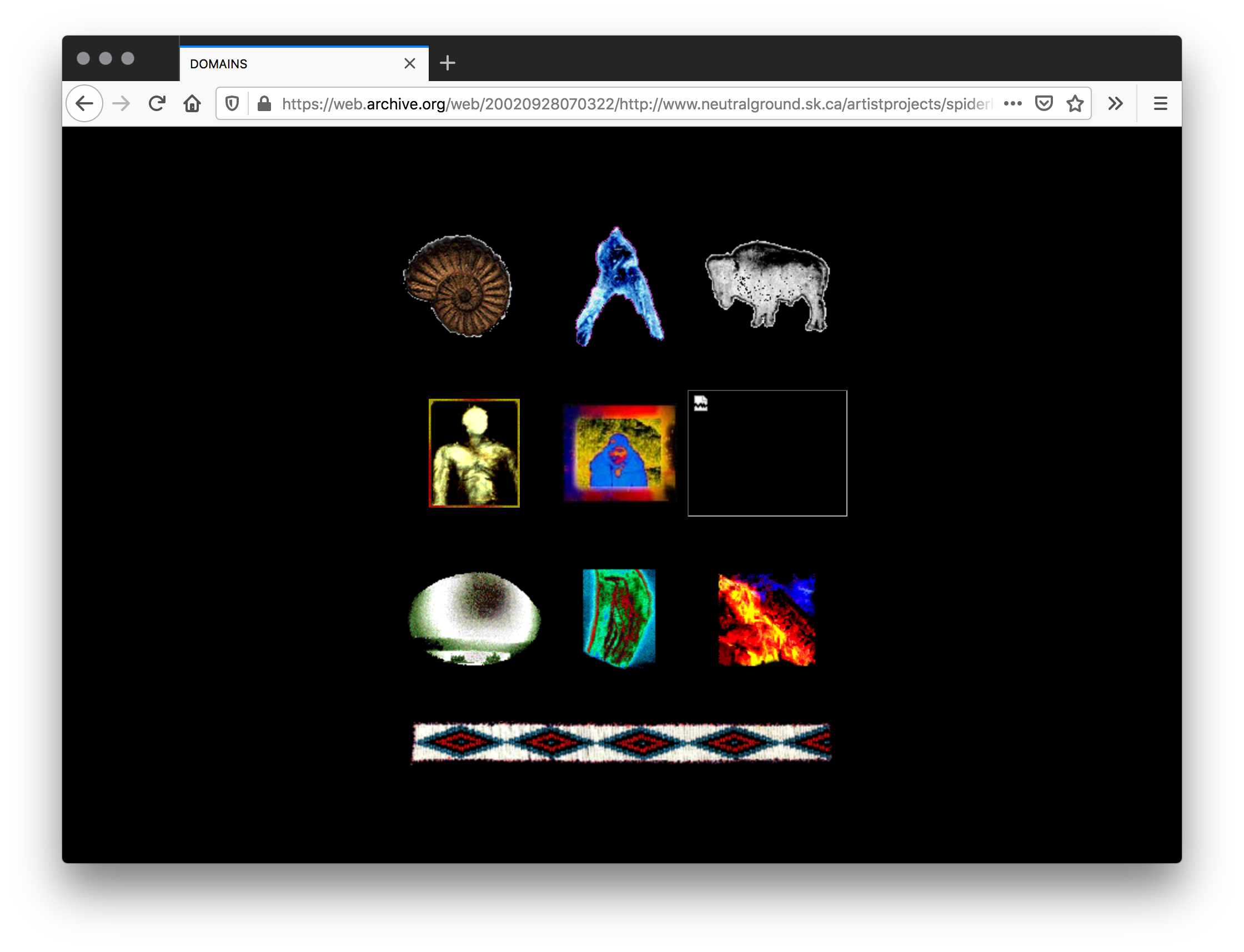
Screenshot, 2020, Firefox v76.0.1 on Mac OS 10.13.3; https://web.archive.org/web/20020928070322/http://www.neutralground.sk.ca/artistprojects/spiderlanguage/domains.html

artifact from https://web.archive.org/web/20020928070322/http://www.neutralground.sk.ca/artistprojects/spiderlanguage/domains.html

artifact from https://web.archive.org/web/20020928070322/http://www.neutralground.sk.ca/artistprojects/spiderlanguage/domains.html

artifact from https://web.archive.org/web/20020928070322/http://www.neutralground.sk.ca/artistprojects/spiderlanguage/domains.html

artifact from https://web.archive.org/web/20020928070322/http://www.neutralground.sk.ca/artistprojects/spiderlanguage/domains.html

artifact from https://web.archive.org/web/20020928070322/http://www.neutralground.sk.ca/artistprojects/spiderlanguage/domains.html

artifact from https://web.archive.org/web/20020928070322/http://www.neutralground.sk.ca/artistprojects/spiderlanguage/domains.html
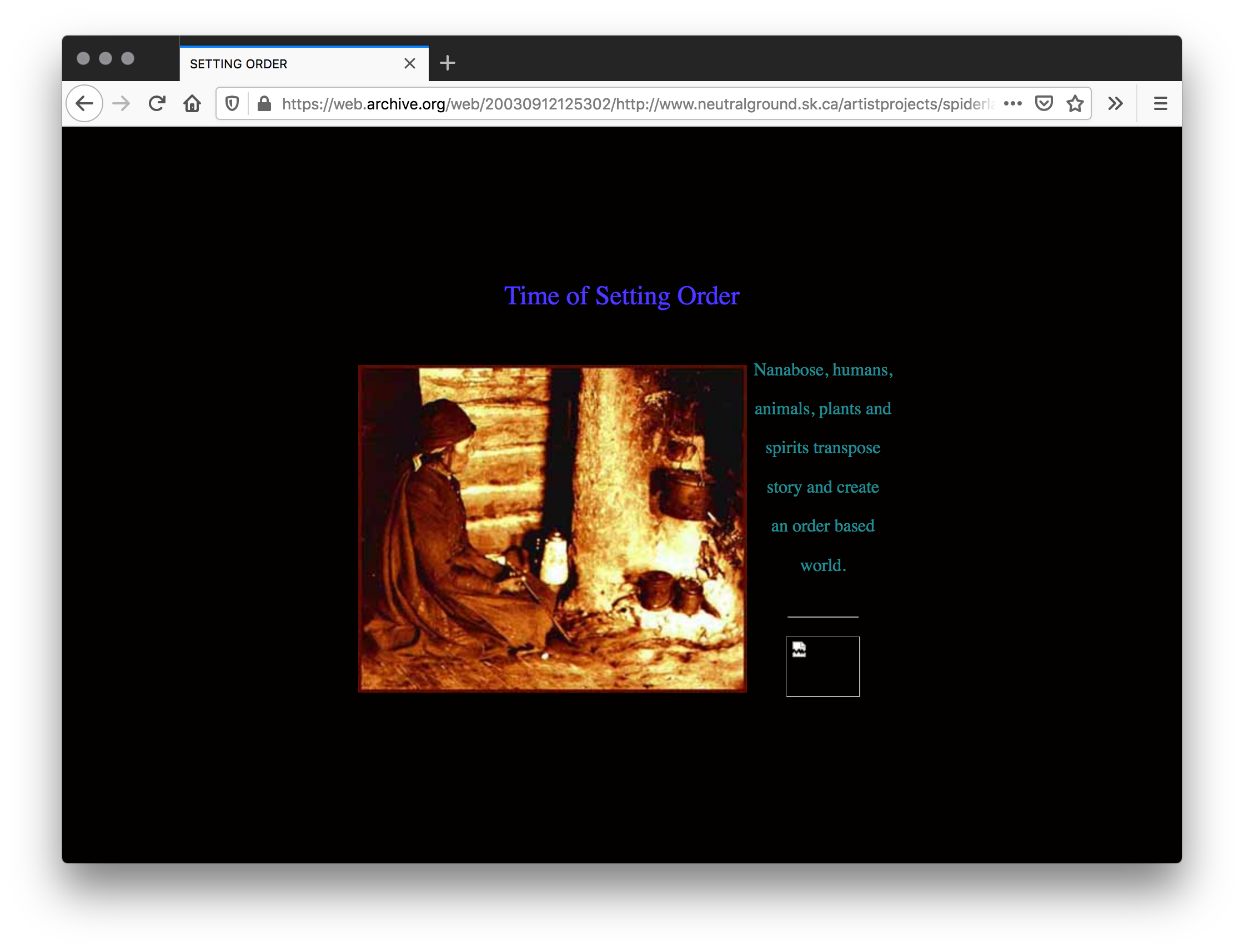
Screenshot, 2020, Firefox v76.0.1 on Mac OS 10.13.3; https://web.archive.org/web/20030912125302/http://www.neutralground.sk.ca/artistprojects/spiderlanguage/settingorder.html
In 1996, Joseph and I once again joined Ahasiw and a group of other artists he had assembled at The Banff Centre (x) to collaborate and create the seminal website Isi-pîkiskwêwin-Ayapihkêsîsak (Speaking the Language of Spiders). This all coincided with the burgeoning of the World Wide Web: the public distribution of web browser software such as Netscape, early search engines such Inktomi and the Canadian government’s awareness to create opportunities in remote and rural communities via their Community Access Program (cap). By 1998, I was ready to take the challenge and run with these new ways to publish our stories using this new delivery platform with its own many layers of codes.
1996, Cheryl L’Hirondelle, Ahasiw Maskegon-Iskwew, and Joseph Naytowhow, https://lovingthespider.net/; excerpt from Cheryl L’Hirondelle, “Codetalkers Recounting Signals of Survival,” (x) in Coded Territories: Tracing Indigenous Pathways in New Media Art, eds. Steve Loft and Kerry Swanson (Calgary: University of Calgary Press, 2014), pp. 149–150

Screenshot, 2020, Firefox v76.0.1 on Mac OS 10.13.3; https://web.archive.org/web/20020323214647/http://neutralground.sk.ca/artistprojects/spiderlanguage/index.html
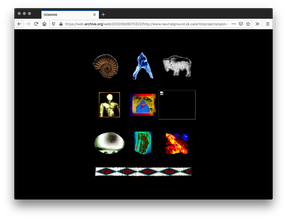
Screenshot, 2020, Firefox v76.0.1 on Mac OS 10.13.3; https://web.archive.org/web/20020928070322/http://www.neutralground.sk.ca/artistprojects/spiderlanguage/domains.html

artifact from https://web.archive.org/web/20020928070322/http://www.neutralground.sk.ca/artistprojects/spiderlanguage/domains.html

artifact from https://web.archive.org/web/20020928070322/http://www.neutralground.sk.ca/artistprojects/spiderlanguage/domains.html

artifact from https://web.archive.org/web/20020928070322/http://www.neutralground.sk.ca/artistprojects/spiderlanguage/domains.html

artifact from https://web.archive.org/web/20020928070322/http://www.neutralground.sk.ca/artistprojects/spiderlanguage/domains.html

artifact from https://web.archive.org/web/20020928070322/http://www.neutralground.sk.ca/artistprojects/spiderlanguage/domains.html
artifact from https://web.archive.org/web/20020928070322/http://www.neutralground.sk.ca/artistprojects/spiderlanguage/domains.html
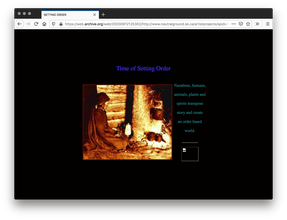
Screenshot, 2020, Firefox v76.0.1 on Mac OS 10.13.3; https://web.archive.org/web/20030912125302/http://www.neutralground.sk.ca/artistprojects/spiderlanguage/settingorder.html
(90)
1996
Aboriginal Narratives in Cyberspace
Loretta Todd
What then does the new territory called cyberspace mean to aboriginal people? If it is really a place, albeit under construction (and which at the same time will not really be there when it is there), what can we name it? Can we name cyberspace the way we name other technologies, from sewing machines to chain saws? Can it, like television, be called “a talking box of space”? Will we name cyberspace a talking web of clouds? (x) A land of mists where shadows chase shadows or a dream world with no memories or traces of before?
Can our narratives, histories, languages, and knowledge find meaning in cyberspace? And above all, can cyberspace help keep Ka-Kanata a clean land?
For instance, will the need for fossil fuel for endless commuting be reduced as Corporate Virtual Workplaces are created in cyberspaces? Or will CVW alienate humanity even more from the land, allowing as yet unheard of ecological abuse? (x)
Will cyberspace enable people to communicate in ways that rupture the power relations of the colonizer and the colonized? Or is cyberspace a clever guise for neocolonialism, where tyranny will find further domain?
1996, Loretta Todd, in Immersed in Technology, eds. Mary Anne Moser and Douglas MacLeod (Cambridge, MA: MIT Press, 1996), pp. 179–194; excerpt pp. 179–180
What then does the new territory called cyberspace mean to aboriginal people? If it is really a place, albeit under construction (and which at the same time will not really be there when it is there), what can we name it? Can we name cyberspace the way we name other technologies, from sewing machines to chain saws? Can it, like television, be called “a talking box of space”? Will we name cyberspace a talking web of clouds? (x) A land of mists where shadows chase shadows or a dream world with no memories or traces of before?
Can our narratives, histories, languages, and knowledge find meaning in cyberspace? And above all, can cyberspace help keep Ka-Kanata a clean land?
For instance, will the need for fossil fuel for endless commuting be reduced as Corporate Virtual Workplaces are created in cyberspaces? Or will CVW alienate humanity even more from the land, allowing as yet unheard of ecological abuse? (x)
Will cyberspace enable people to communicate in ways that rupture the power relations of the colonizer and the colonized? Or is cyberspace a clever guise for neocolonialism, where tyranny will find further domain?
1996, Loretta Todd, in Immersed in Technology, eds. Mary Anne Moser and Douglas MacLeod (Cambridge, MA: MIT Press, 1996), pp. 179–194; excerpt pp. 179–180
(91)
1996
Cyber Femin Club
Alla Mitrofanova, Irina Aktuganova
In fall 2002 Olga Levina came to me (when all the grants ran out she had to go and work as a system administrator in some company) and told me that they taught them to crimp cables on the sysadmin courses and women were protesting that it’s not women’s work. She thought it would be good to organize a course on technological literacy. I liked the sound of “crimping cables” and came up with the name Do It Yourself, a course in practical independence (x) for women. And then Olga and I decided that it would not be limited to cables but would include all hardware issues (disassembling and reassembling computers like they do with machine guns in the army), car maintenance, fixing home appliances, and renovation work. All the teachers were women.
1996, Alla Mitrofanova and Irina Aktuganova; excerpt from Irina Aktuganova, quoted in Maria Udovydchenko, “Do It Yourself: A Practical Independence Course for Women in St. Petersburg,” Russian Art Archive Network, April 13, 2020, https://russianartarchive.net/en/research/ciberfemin; referred by Marina Gržinić and Boryana Rossa
referred by Marina Grzinic, Boryana Rossa
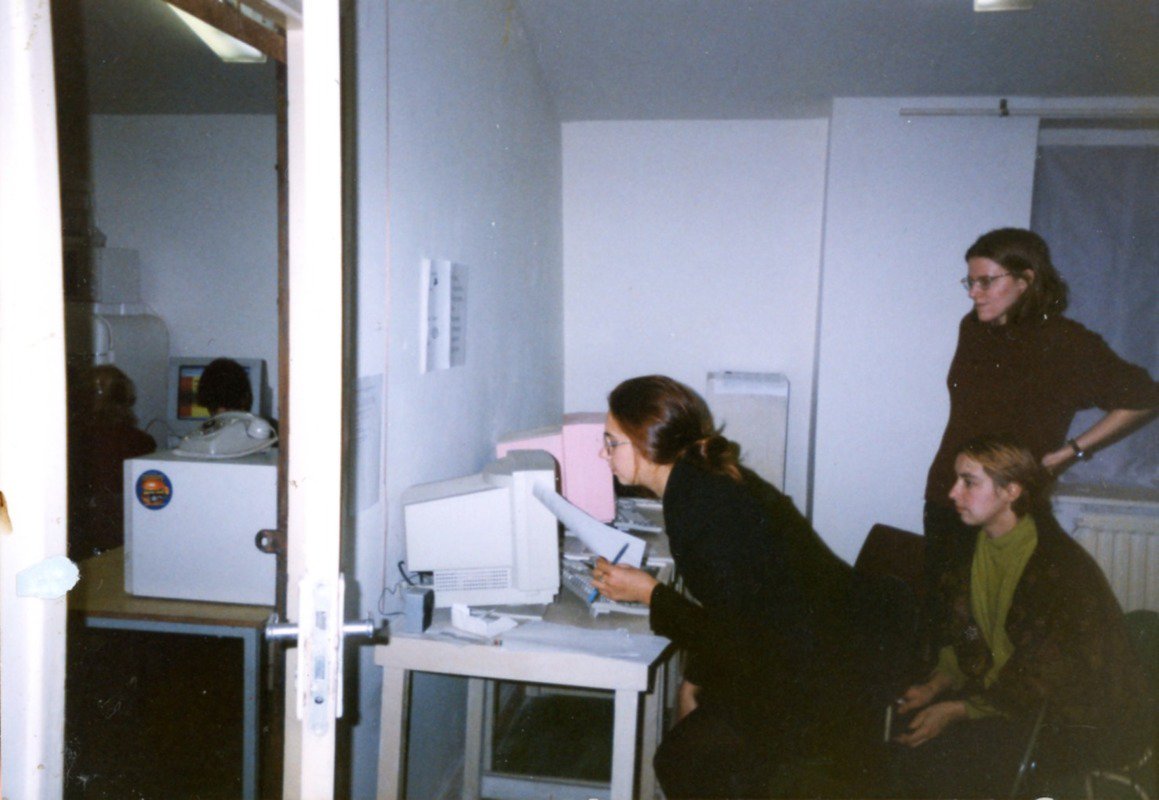
Olga Levina teaching Internet Center for Women visitors to build websites, 1998. Photo: Irina Aktuganova
In fall 2002 Olga Levina came to me (when all the grants ran out she had to go and work as a system administrator in some company) and told me that they taught them to crimp cables on the sysadmin courses and women were protesting that it’s not women’s work. She thought it would be good to organize a course on technological literacy. I liked the sound of “crimping cables” and came up with the name Do It Yourself, a course in practical independence (x) for women. And then Olga and I decided that it would not be limited to cables but would include all hardware issues (disassembling and reassembling computers like they do with machine guns in the army), car maintenance, fixing home appliances, and renovation work. All the teachers were women.
1996, Alla Mitrofanova and Irina Aktuganova; excerpt from Irina Aktuganova, quoted in Maria Udovydchenko, “Do It Yourself: A Practical Independence Course for Women in St. Petersburg,” Russian Art Archive Network, April 13, 2020, https://russianartarchive.net/en/research/ciberfemin; referred by Marina Gržinić and Boryana Rossa
referred by Marina Grzinic, Boryana Rossa
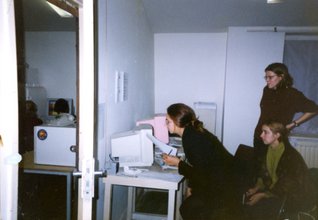
Olga Levina teaching Internet Center for Women visitors to build websites, 1998. Photo: Irina Aktuganova
(92)
1996–
2007
Collected Visions
Lorie Novak, Clilly Castiglia, Betsey Kershaw, Kerry O'Neill
The most significant aspect of Collected Visions is the ability to submit images to a growing archive (x) of family photographs and create photo stories. You can search and view images from the on-line database of more than 1200 images and then create and submit live photographic essays exploring the power of family snapshots. […]
The concept for Collected Visions grew out of the photographs and installations Lorie Novak has been creating since the early 1980s. She uses family snapshots and images from the media to explore the relationships between personal and collective memory. Lorie Novak curates the exhibitions in the CV Gallery and maintains the CV Museum. Because the concept of “truth” is a complicated one, the ownership of the snapshots is not identified beyond what is written in the essays. The majority of submitted stories are posted—the goal of the site is to be a place of diverse voices.
1996, Lorie Novak, Clilly Castiglia, Betsey Kershaw, and Kerry O’Neill, http://www.collectedvisions.net/; submitted by Lorie Novak
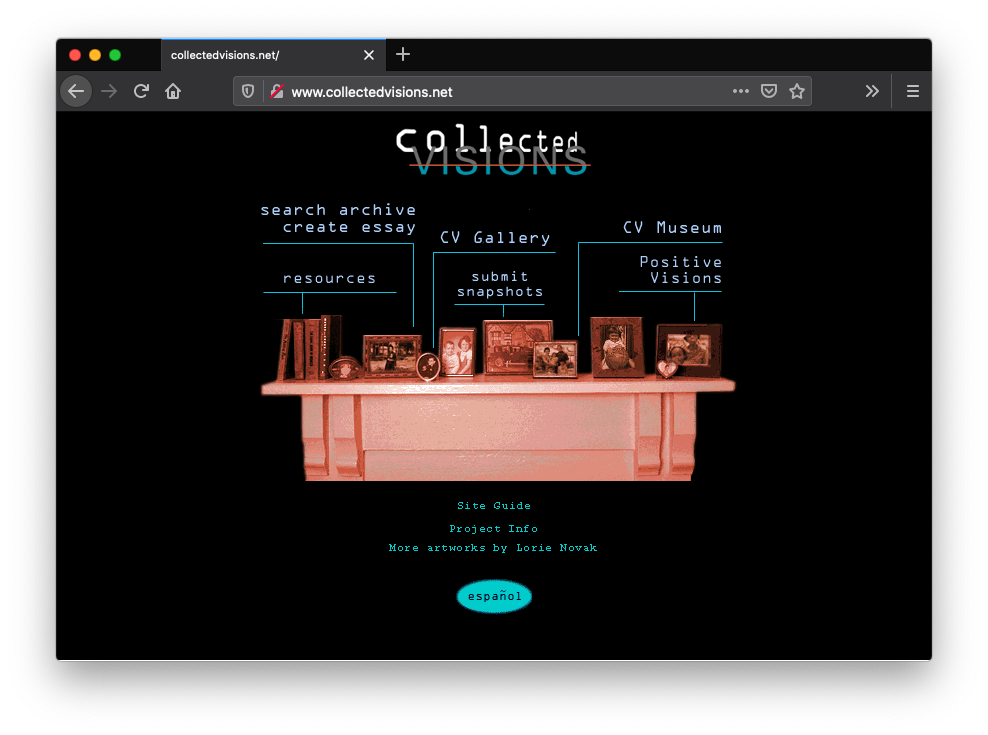
Screenshot May 19, 2021, Firefox v88.0.1 on Mac OS 10.15.7; http://www.collectedvisions.net/
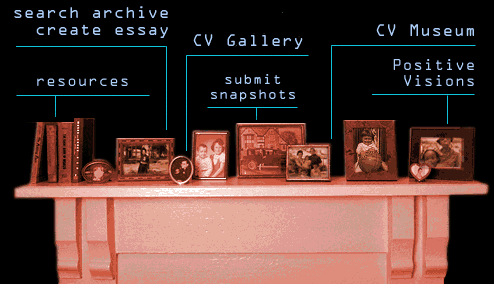
artifact from homepage http://www.collectedvisions.net/

artifact from “Project Info” page http://www.collectedvisions.net/
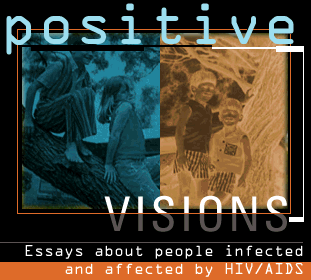
artifact from “Positive Visions” page http://www.collectedvisions.net/
The most significant aspect of Collected Visions is the ability to submit images to a growing archive (x) of family photographs and create photo stories. You can search and view images from the on-line database of more than 1200 images and then create and submit live photographic essays exploring the power of family snapshots. […]
The concept for Collected Visions grew out of the photographs and installations Lorie Novak has been creating since the early 1980s. She uses family snapshots and images from the media to explore the relationships between personal and collective memory. Lorie Novak curates the exhibitions in the CV Gallery and maintains the CV Museum. Because the concept of “truth” is a complicated one, the ownership of the snapshots is not identified beyond what is written in the essays. The majority of submitted stories are posted—the goal of the site is to be a place of diverse voices.
1996, Lorie Novak, Clilly Castiglia, Betsey Kershaw, and Kerry O’Neill, http://www.collectedvisions.net/; submitted by Lorie Novak
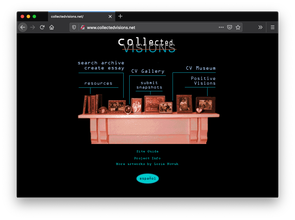
Screenshot May 19, 2021, Firefox v88.0.1 on Mac OS 10.15.7; http://www.collectedvisions.net/
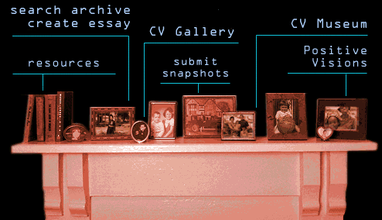
artifact from homepage http://www.collectedvisions.net/

artifact from “Project Info” page http://www.collectedvisions.net/
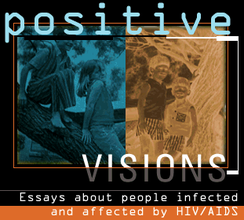
artifact from “Positive Visions” page http://www.collectedvisions.net/
(93)
1996
My Boyfriend Came Back from the War
Olia Lialina
My boyfriend came back from the war. After dinner they left us alone.
Where are you? I can’t see you. (x)
FORGET IT.
you don’t trust me,
i see
But... it was only once...
Last summer...
And if you think...
Why I should explain?...
Don't you see?
So,
last time we met
when...
And you promised.
Me too.
Do you like my new dress?
We’ll start a new life
May be (sic) you look at me?
Who asks you?
nobody here can love
or understand me
1996, Olia Lialina, Last Real Net Art Museum, http://myboyfriendcamebackfromth.ewar.ru/
http://www.teleportacia.org/war/
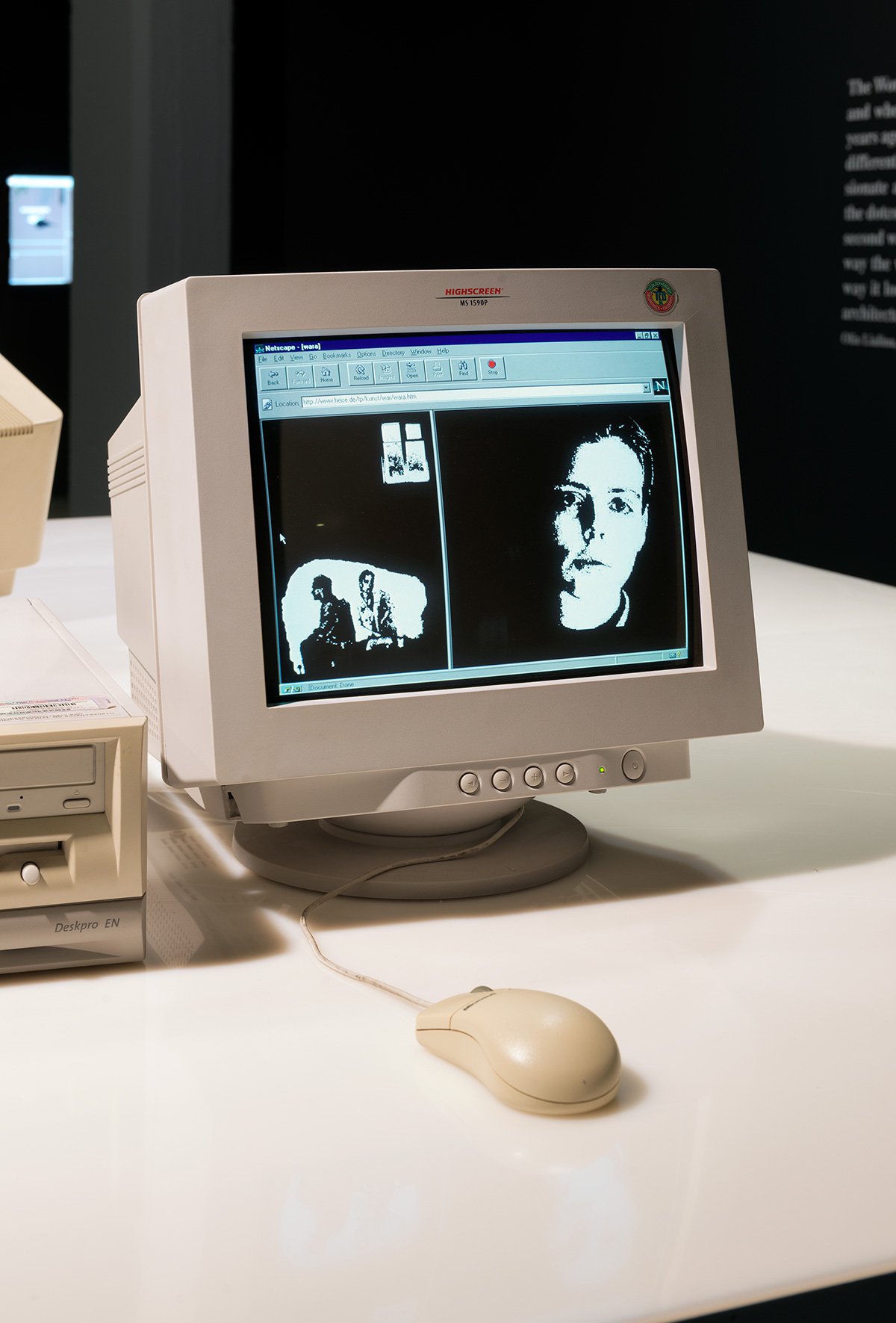
Olia Lialina, My Boyfriend Came Back from the War, 1996. Photo: Franz Wamhof. image from https://anthology.rhizome.org/my-boyfriend-came-back-from-the-war
My boyfriend came back from the war. After dinner they left us alone.
Where are you? I can’t see you. (x)
FORGET IT.
you don’t trust me,
i see
But... it was only once...
Last summer...
And if you think...
Why I should explain?...
Don't you see?
So,
last time we met
when...
And you promised.
Me too.
Do you like my new dress?
We’ll start a new life
May be (sic) you look at me?
Who asks you?
nobody here can love
or understand me
1996, Olia Lialina, Last Real Net Art Museum, http://myboyfriendcamebackfromth.ewar.ru/
http://www.teleportacia.org/war/
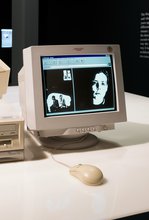
Olia Lialina, My Boyfriend Came Back from the War, 1996. Photo: Franz Wamhof. image from https://anthology.rhizome.org/my-boyfriend-came-back-from-the-war
(94)
1996
Tunnel
Melinda Rackham
darkness in the tunnel
her fingertips wandered
into a flickering backlit arena
sticky sweet liquid sexuality (x)
she could choose who to be
how many to be
who to fuck
when to go
how to play
[…]
needing another adrenaline rush
needed the modem
to log into
trash porn suburban melodrama (x)
his light entertainment
1996, Melinda Rackham, https://subtle.net/tunnel/
darkness in the tunnel
her fingertips wandered
into a flickering backlit arena
sticky sweet liquid sexuality (x)
she could choose who to be
how many to be
who to fuck
when to go
how to play
[…]
needing another adrenaline rush
needed the modem
to log into
trash porn suburban melodrama (x)
his light entertainment
1996, Melinda Rackham, https://subtle.net/tunnel/
(95)
1997–
1998
Flesh Machine
Critical Art Ensemble
This live performative project attempted to simulate bio-class divisions in the flesh economy. By live testing the suitability of participants to pass on their genes through a “donor program,” CAE revealed the latent residue of eugenics in the fertility market. This performance also brought the scientific processes of reproductive technology into the public domain. […] While the public could accept intervention in the process of dying, intervention in the process of birth was suspect. To inscribe the body as a machinic system that could be repaired or maintained through medical and scientific tinkering was (and is) perfectly fine, as long as medical science does not attempt to appropriate the role of creator. For example, to biologically support the immune system through vaccinations that strengthen the organic system can only be perceived as desirable and well worth voluntarily acquiring in a secular society, while creating a new and improved immune system through genetic intervention is not so desirable (at least not yet).
1997, Critical Art Ensemble, http://critical-art.net/flesh-machine-1997-98/
This live performative project attempted to simulate bio-class divisions in the flesh economy. By live testing the suitability of participants to pass on their genes through a “donor program,” CAE revealed the latent residue of eugenics in the fertility market. This performance also brought the scientific processes of reproductive technology into the public domain. […] While the public could accept intervention in the process of dying, intervention in the process of birth was suspect. To inscribe the body as a machinic system that could be repaired or maintained through medical and scientific tinkering was (and is) perfectly fine, as long as medical science does not attempt to appropriate the role of creator. For example, to biologically support the immune system through vaccinations that strengthen the organic system can only be perceived as desirable and well worth voluntarily acquiring in a secular society, while creating a new and improved immune system through genetic intervention is not so desirable (at least not yet).
1997, Critical Art Ensemble, http://critical-art.net/flesh-machine-1997-98/
(96)
1997
Zeros and Ones: Women and the New Technoculture
Sadie Plant
Only when digital networks arranged themselves in threads and links did footnotes begin to walk all over what had once been the bodies of organized texts. Hypertext programs and the Net are webs of footnotes without central points, organizing principles, hierarchies. […] And yet they are also—and have always been—immanent to all and every piece of written work. “The frontiers of the book,” wrote Michel Foucault long before these modes of writing hypertext or retrieving data from the Net emerged, “are never clear-cut: beyond the title, the first lines, and the last full stop, beyond its internal configurations and its autonomous form, it is caught in a system of references to other books, other texts, other sentences: it is a node within network.” […] Reality does not run along the neat straight lines of the printed page. Only by “criss-crossing the complex topical landscape” can the “twin goals of highlighting multifacetedness and establishing multiple connections” even begin to be attained. Hypertext makes it possible for “single (or even small numbers of) connecting threads” to be assembled into a “‘woven’ interconnectedness” in which “strength of connection derives from the partial overlapping of many different strands of connectedness across cases rather than from any single strand running through large numbers of cases …”
1997, Sadie Plant (London: Fourth Estate, 1997); excerpt p. 10
https://www.are.na/block/7635218 http://www.4thestate.co.uk/book/zeros-and-ones-digital-women-and-the-new-technoculture-sadie-plant-9781857026986/
Only when digital networks arranged themselves in threads and links did footnotes begin to walk all over what had once been the bodies of organized texts. Hypertext programs and the Net are webs of footnotes without central points, organizing principles, hierarchies. […] And yet they are also—and have always been—immanent to all and every piece of written work. “The frontiers of the book,” wrote Michel Foucault long before these modes of writing hypertext or retrieving data from the Net emerged, “are never clear-cut: beyond the title, the first lines, and the last full stop, beyond its internal configurations and its autonomous form, it is caught in a system of references to other books, other texts, other sentences: it is a node within network.” […] Reality does not run along the neat straight lines of the printed page. Only by “criss-crossing the complex topical landscape” can the “twin goals of highlighting multifacetedness and establishing multiple connections” even begin to be attained. Hypertext makes it possible for “single (or even small numbers of) connecting threads” to be assembled into a “‘woven’ interconnectedness” in which “strength of connection derives from the partial overlapping of many different strands of connectedness across cases rather than from any single strand running through large numbers of cases …”
1997, Sadie Plant (London: Fourth Estate, 1997); excerpt p. 10
https://www.are.na/block/7635218 http://www.4thestate.co.uk/book/zeros-and-ones-digital-women-and-the-new-technoculture-sadie-plant-9781857026986/
(97)
1997
Modest_Witness@Second_Millennium.FemaleMan_Meets_OncoMouse: Feminism and Technoscience
Donna Haraway
The modest witness is the sender and receiver of messages in my e-mail address. So let us investigate how this subject position is woven into the nets traced here. The modest witness is a figure in the narrative net of this book, which works to refigure the subjects, objects, and communicative commerce of technoscience into different kinds of knots. I am consumed by the project of materialized refiguration; I think that is what’s happening in the worldly projects of technoscience and feminism.
1997, Donna J. Haraway (New York: Routledge, 1997); excerpt p. 23
The modest witness is the sender and receiver of messages in my e-mail address. So let us investigate how this subject position is woven into the nets traced here. The modest witness is a figure in the narrative net of this book, which works to refigure the subjects, objects, and communicative commerce of technoscience into different kinds of knots. I am consumed by the project of materialized refiguration; I think that is what’s happening in the worldly projects of technoscience and feminism.
1997, Donna J. Haraway (New York: Routledge, 1997); excerpt p. 23
(98)
1997
You Are Cyborg
Hari Kunzru
[Donna] Haraway’s world is one of tangled networks—part human, part machine; complex hybrids of meat and metal that relegate old-fashioned concepts like natural and artificial to the archives. These hybrid networks are the cyborgs, and they don’t just surround us—they incorporate us. An automated production line in a factory, an office computer network, a club’s dancers, lights, and sound systems—all are cyborg constructions of people and machines.
Networks are also inside us. Our bodies, fed on the products of agribusiness, kept healthy—or damaged—by pharmaceuticals, and altered by medical procedures, aren’t as natural as The Body Shop would like us to believe. Truth is, we’re constructing ourselves, just like we construct chip sets or political systems—and that brings with it a few responsibilities. Haraway has no doubt that to survive we need to get up to speed on the complex realities of technoculture. To any of the usual good/bad, nature/nurture, right/wrong, biology/society arguments, she smiles, breaks into her infectious, ironic laugh, and reminds us that the world is “messier than that.” It might well become the quintessential 21st-century catchphrase.
1997, Hari Kunzru, Wired, February 1, 1997, https://www.wired.com/1997/02/ffharaway/
https://www.are.na/block/7635380
[Donna] Haraway’s world is one of tangled networks—part human, part machine; complex hybrids of meat and metal that relegate old-fashioned concepts like natural and artificial to the archives. These hybrid networks are the cyborgs, and they don’t just surround us—they incorporate us. An automated production line in a factory, an office computer network, a club’s dancers, lights, and sound systems—all are cyborg constructions of people and machines.
Networks are also inside us. Our bodies, fed on the products of agribusiness, kept healthy—or damaged—by pharmaceuticals, and altered by medical procedures, aren’t as natural as The Body Shop would like us to believe. Truth is, we’re constructing ourselves, just like we construct chip sets or political systems—and that brings with it a few responsibilities. Haraway has no doubt that to survive we need to get up to speed on the complex realities of technoculture. To any of the usual good/bad, nature/nurture, right/wrong, biology/society arguments, she smiles, breaks into her infectious, ironic laugh, and reminds us that the world is “messier than that.” It might well become the quintessential 21st-century catchphrase.
1997, Hari Kunzru, Wired, February 1, 1997, https://www.wired.com/1997/02/ffharaway/
https://www.are.na/block/7635380
(99)
1997
Affective Computing
Rosalind Picard
I never expected to write a book addressing emotions. My education has been dominated by science and engineering, and based on axioms, laws, equations, rational thinking, and a pride that shuns the “touchy-feely.” (x) Being a woman in a field containing mostly men has provided extra incentive to cast off the stereotype of “emotional female” in favor of the logical behavior of a scholar. […] This is a book about emotions and computing. Moreover, it is not about how people feel about computers, but about something of more questionable cause: giving emotional abilities to computers. […] The adjective “emotional” evokes negative connotations which are in many cases justified. Computers do not need poor judgment and irrational behavior. One of the things I will show in this book, however, is that in completely avoiding emotion, computer designers may actually lead computers toward these undesirable goals.
1997, Rosalind W. Picard (Cambridge, MA: MIT Press, 1997); excerpt p. iv
https://mitpress.mit.edu/books/affective-computing
I never expected to write a book addressing emotions. My education has been dominated by science and engineering, and based on axioms, laws, equations, rational thinking, and a pride that shuns the “touchy-feely.” (x) Being a woman in a field containing mostly men has provided extra incentive to cast off the stereotype of “emotional female” in favor of the logical behavior of a scholar. […] This is a book about emotions and computing. Moreover, it is not about how people feel about computers, but about something of more questionable cause: giving emotional abilities to computers. […] The adjective “emotional” evokes negative connotations which are in many cases justified. Computers do not need poor judgment and irrational behavior. One of the things I will show in this book, however, is that in completely avoiding emotion, computer designers may actually lead computers toward these undesirable goals.
1997, Rosalind W. Picard (Cambridge, MA: MIT Press, 1997); excerpt p. iv
https://mitpress.mit.edu/books/affective-computing
(100)
1997
Life on the Screen: Identity in the Age of the Internet
Sherry Turkle
We come to see ourselves differently as we catch sight of our images in the mirror of the machine. A decade ago, when I first called the computer a second self, these identity-transforming relationships were almost always one-to-one, a person alone with a machine. This is no longer the case. (x) […]
We are able to step through the looking glass. We are learning to live in virtual worlds. We may find ourselves alone as we navigate virtual oceans, unravel virtual mysteries, and engineer virtual skyscrapers. But increasingly, when we step through the looking glass, other people are there as well. […]
It is on the Internet that our confrontations with technology as it collides with our sense of human identity are fresh, even raw. In the real-time communities of cyberspace, we are dwellers on the threshold between the real and virtual, unsure of our footing, inventing ourselves as we go along.
1995, Sherry Turkle (New York: Simon & Schuster, 1995); excerpt pp. 9–10
https://www.simonandschuster.com/books/Life-on-the-Screen/Sherry-Turkle/9780684833484
We come to see ourselves differently as we catch sight of our images in the mirror of the machine. A decade ago, when I first called the computer a second self, these identity-transforming relationships were almost always one-to-one, a person alone with a machine. This is no longer the case. (x) […]
We are able to step through the looking glass. We are learning to live in virtual worlds. We may find ourselves alone as we navigate virtual oceans, unravel virtual mysteries, and engineer virtual skyscrapers. But increasingly, when we step through the looking glass, other people are there as well. […]
It is on the Internet that our confrontations with technology as it collides with our sense of human identity are fresh, even raw. In the real-time communities of cyberspace, we are dwellers on the threshold between the real and virtual, unsure of our footing, inventing ourselves as we go along.
1995, Sherry Turkle (New York: Simon & Schuster, 1995); excerpt pp. 9–10
https://www.simonandschuster.com/books/Life-on-the-Screen/Sherry-Turkle/9780684833484
(101)
1997–
2001
Old Boys Network
Susanne Ackers, Cornelia Sollfrank, Ellen Nonnenmacher, Vali Djordjevic, Julianne Pierce
OBN stands for Old Boys Network. OBN is regarded as the first international Cyberfeminist alliance and was founded in 1997 in Berlin. Since the early days the network keeps changing due to changing members. OBN is a real and a virtual coalition of Cyberfeminists. Under the umbrella of the term “Cyberfeminism,” OBN contributes to the critical discourse on new media, especially focussing on its gender-specific aspects.
Normally, the term‚ “Old Boys Network” is used as an idiom, a metaphor to describe an informal interrelation of men [here to be understood as synonyme for human beings of male sex]. It should be noted that dictionaries, particularly those which went into print before 1997, might not contain some important new meanings regarding the term. Nowadays, “Old Boys Network” may also be in use for: a cyberfeminist network, a brand for cyberfeminist activities, a dangerous cyberfeminist virus …
1997, Susanne Ackers, Cornelia Sollfrank, Ellen Nonnenmacher, Vali Djordjevic and Julianne Pierce, https://obn.org
Berlin, Germany
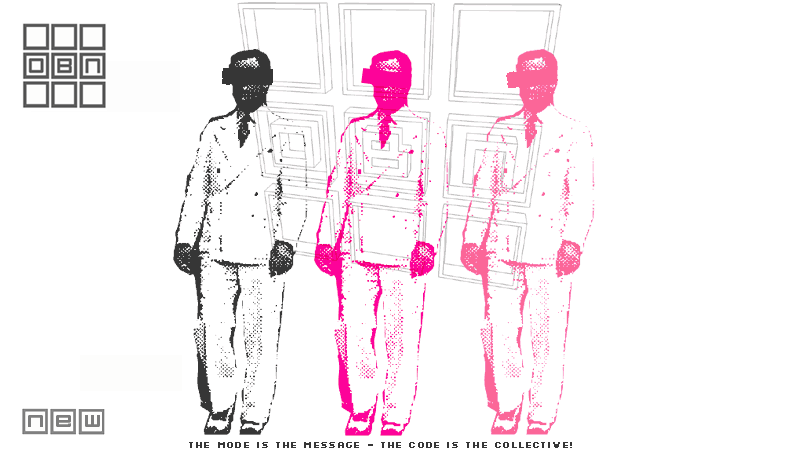
Image from https://www.obn.org/
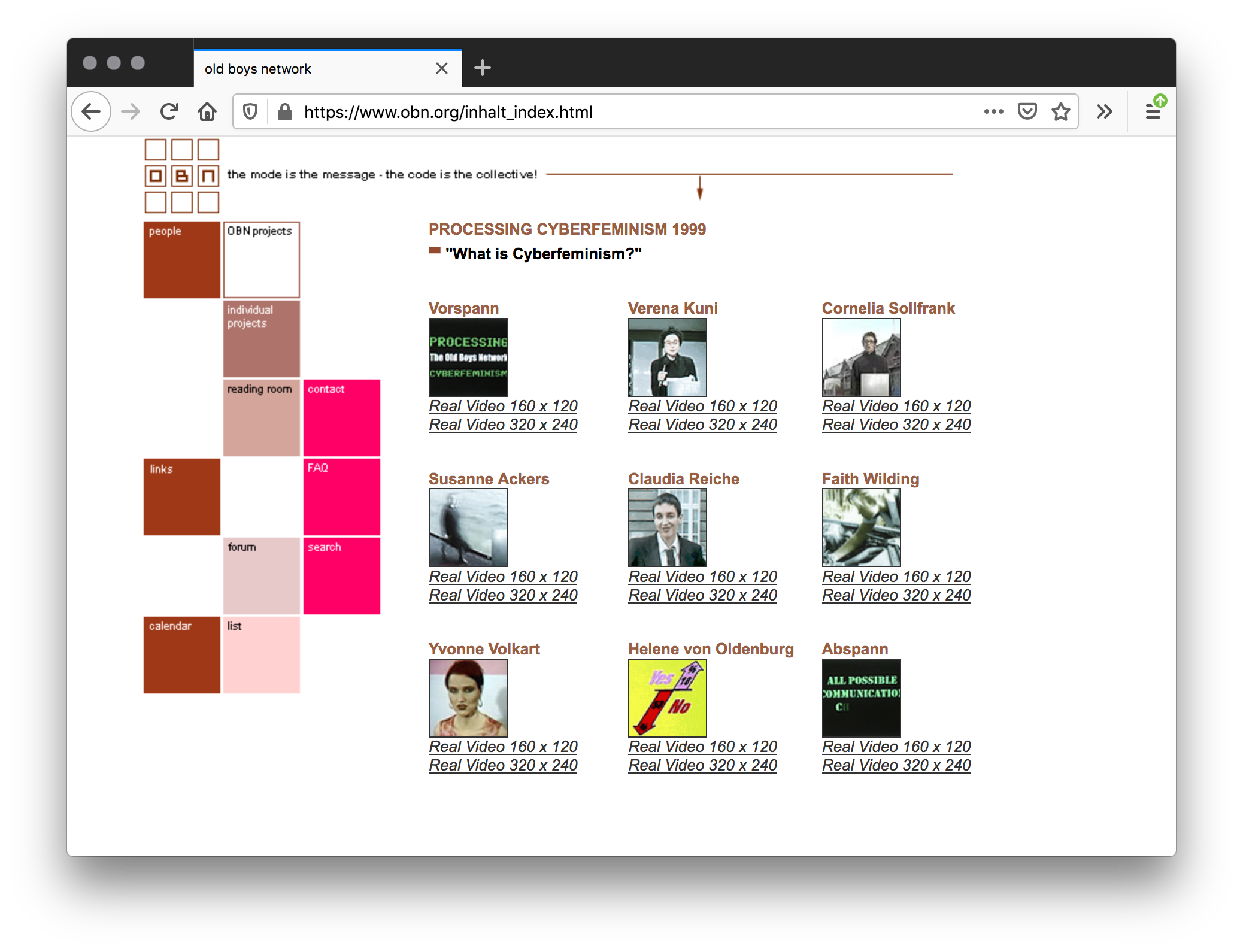
Screenshot, 2020, Firefox v76.0.1 on Mac OS 10.13.3; https://www.obn.org/inhalt_index.html
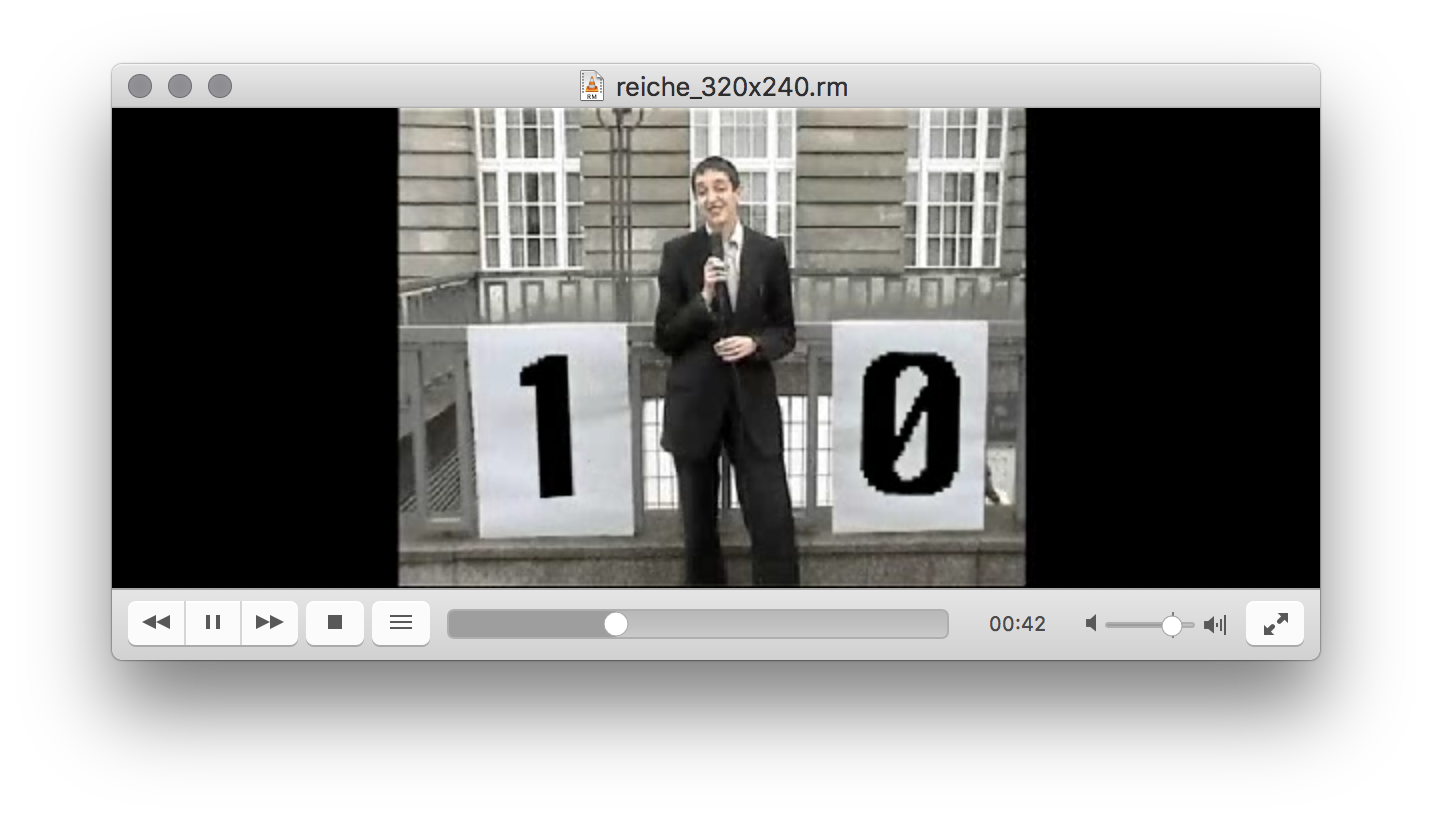
Screenshot, 2020, Firefox v76.0.1 on Mac OS 10.13.3; reiche_320x240.rm
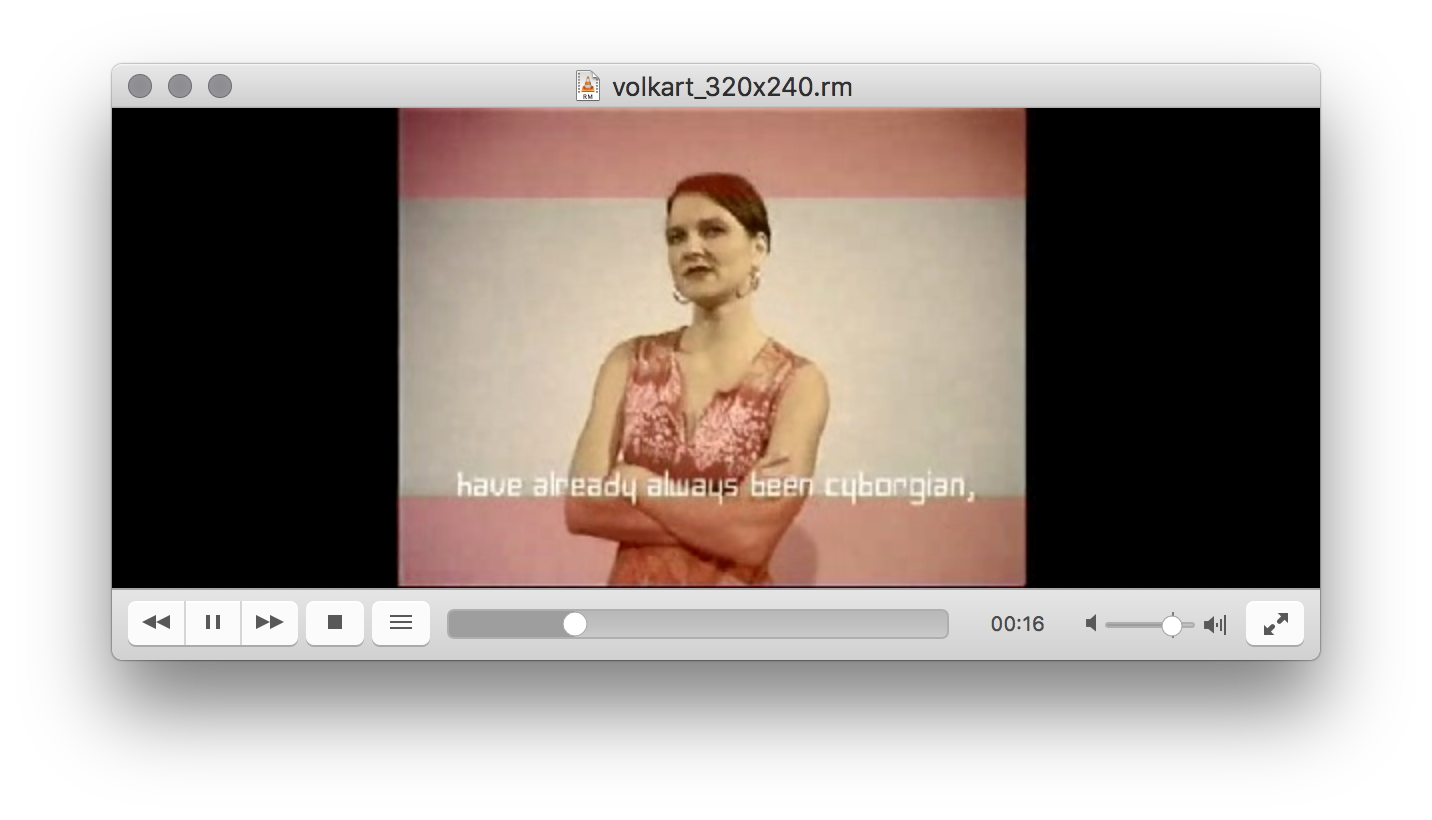
Screenshot, 2020, Firefox v76.0.1 on Mac OS 10.13.3; volkart_320x240.rm
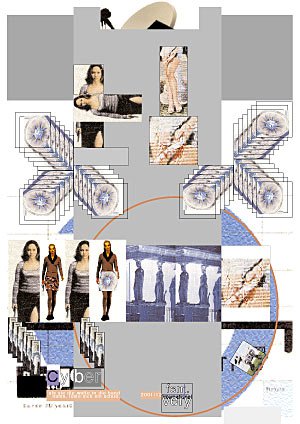
“08_britta_bonifacius”, Image from https://www.obn.org/obn_pro/postergallery/obn_poster_color/Seiten/08_britta_bonifacius.htm
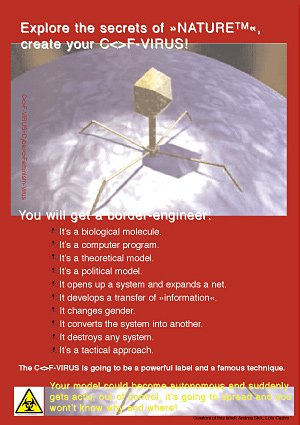
“18_andrea_sick”, Image from https://www.obn.org/obn_pro/postergallery/obn_poster_color/Seiten/18_andrea_sick.htm
OBN stands for Old Boys Network. OBN is regarded as the first international Cyberfeminist alliance and was founded in 1997 in Berlin. Since the early days the network keeps changing due to changing members. OBN is a real and a virtual coalition of Cyberfeminists. Under the umbrella of the term “Cyberfeminism,” OBN contributes to the critical discourse on new media, especially focussing on its gender-specific aspects.
Normally, the term‚ “Old Boys Network” is used as an idiom, a metaphor to describe an informal interrelation of men [here to be understood as synonyme for human beings of male sex]. It should be noted that dictionaries, particularly those which went into print before 1997, might not contain some important new meanings regarding the term. Nowadays, “Old Boys Network” may also be in use for: a cyberfeminist network, a brand for cyberfeminist activities, a dangerous cyberfeminist virus …
1997, Susanne Ackers, Cornelia Sollfrank, Ellen Nonnenmacher, Vali Djordjevic and Julianne Pierce, https://obn.org
Berlin, Germany
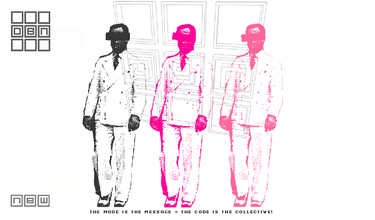
Image from https://www.obn.org/
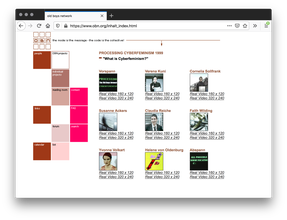
Screenshot, 2020, Firefox v76.0.1 on Mac OS 10.13.3; https://www.obn.org/inhalt_index.html
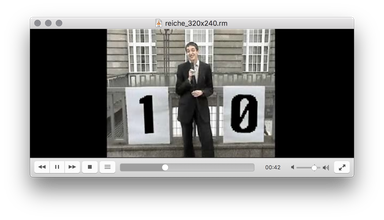
Screenshot, 2020, Firefox v76.0.1 on Mac OS 10.13.3; reiche_320x240.rm
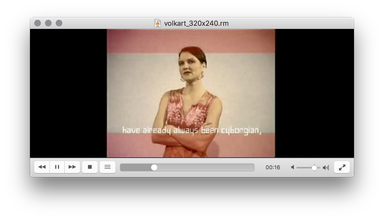
Screenshot, 2020, Firefox v76.0.1 on Mac OS 10.13.3; volkart_320x240.rm

“08_britta_bonifacius”, Image from https://www.obn.org/obn_pro/postergallery/obn_poster_color/Seiten/08_britta_bonifacius.htm

“18_andrea_sick”, Image from https://www.obn.org/obn_pro/postergallery/obn_poster_color/Seiten/18_andrea_sick.htm
(102)
1997
100 Anti-Theses
Old Boys Network
- cyberfeminism is not a fragrance
2. cyberfeminism is not a fashion statement
3. sajbrfeminizm nije usamljen
4. cyberfeminism is not ideology
5. cyberfeminism nije aseksualan
6. cyberfeminism is not boring
7. cyberfeminism ist kein gruenes haekeldeckchen
8. cyberfeminism ist kein leerer kuehlschrank
9. cyberfeminism ist keine theorie
10. cyberfeminism ist keine praxis
11. cyberfeminism ist keine traditio
12. cyberfeminism is not an institution
13. cyberfeminism is notusing words without any knowledge of numbers
14. cyberfeminism is not complete (x)
15. cyberfeminism is not error 101
16. cyberfeminism ist kein fehler
17. cyberfeminism ist keine kunst
18. cyberfeminism is not an ism
19. cyberfeminism is not anti-male
20. sajbrfeminizm nige nesto sto znam da je
21. cyberfeminism is not a structure
22. cyberfeminismo no es uns frontera
23. cyberfeminism nije poslusan
24. cyberfeminism nije apolitican
25. cyberfeminisme is niet concreet
26. cyberfeminism is not separatism
27. cyberfeminism is not a tradition
28. cyberfeminism is not maternalistic
29. cyberfeminisme id niet iets buitenlands
30. cyberfeminism is not without connectivity
31. cyberfeminismus ist nicht mehr wegzudenken
32. cyberfeminismus ist kein oxymoron
33. cyberfeminism is not on sale
34. cyberfeminism is nor for sale (x)
35. cyberfeminismus ist nicht gut
36. cyberfeminismus ist nicht schlecht
37. cyberfeminismus ist nicht modern
38. cyberfeminismus ist nicht post-modern
39. cyberfeminism is not natural
40. cyberfeminism is not essentialist
41. cyberfeminism is not abject
42. cyberfeminism is not an avatar
43. cyberfeminism is not an alter ego
44. cyberfeminismus ist nicht truegerisch
45. cyberfeminismus ist nicht billig
46. cyberfeminismus ist nicht willig
47. cyberfeminisme n'est pas jaloux
48. cyberfeminism is not exclusive
49. cyberfeminism is not solid
50. cyberfeminism is not genetic
51. cyberfeminismus ist keine entschuldigung
52. cyberfeminism is not prosthetic
53. cyberfeminismo no tiene cojones
54. cyberfeminisme n'est pas triste
55. cyberfeminisme n'est pas une pipe
56. cyberfeminism is not a motherboard
57. cyberfeminism is not a fake
58. cyberfeminism nije ogranicen
59. cyberfeminism nije nekonfliktan
60. cyberfeminism nije make up
61. cyberfeminism nije zatvoren prozor
62. cyberfeminism is not a lack
63. cyberfeminism is not a wound
64. cyberfeminism is not a trauma
65. cyberfeminismo no es una banana
66. cyberfeminism is not a sure shot
67. cyberfeminism is not an easy mark
68. cyberfeminism is not a single woman
69. cyberfeminism is not romantic
70. cyberfeminism is not post-modern
71. cyberfeminism is not a media-hoax
72. cyberfeminism is not neutral
73. cyberfeminism is not lacanian
74. cyberfeminism is not nettime
75. cyberfeminism is not a picnic
76. cyberfeminism is not a coldfish
77. cyberfeminism is not a cyberepilation
78. cyberfeminism is not a horror movie
79. cyberfeminism is not science fiction
80. cyberfeminism is not artificial intelligence
81. cyberfeminism is not an empty space
82. cyberfeminism is not immobile
83. cyberfeminism is not about boring toys for boring boys
84. cyberfeminismus ist keine verlegenheitsloesung
85. cyberfeminism is not a one-way street
86. cyberfeminism is not supporting quantum mechanics
87. cyberfeminism is not caffeine-free
88. cyberfeminism is not a non-smoking area
89. cyberfeminism is not daltonistic
90. cyberfeminism is not nice
91. cyberfeminismo no es callado
92. cyberfeminism is not lady.like
93. cyberfeminismus ist nicht arrogant
94. cyberfeminismus ist keine nudelsauce
95. cyberfeminism is not mythical
96. cyberfeminism is not from outer space (x)
97. cyberfeminismo no es rock 'n roll
98. cyberfeminism is not dogmatic
99. cyberfeminism is not stable
100. cyberfeminism has not only one language
1997, Old Boys Network, https://obn.org/obn/reading_room/manifestos/html/anti.html
https://www.obn.org/cfundef/100antitheses.html
Kassel, Germany

Screenshot, 2020, Firefox v76.0.1 on Mac OS 10.13.3; https://www.obn.org/cfundef/100antitheses.html
- cyberfeminism is not a fragrance
2. cyberfeminism is not a fashion statement
3. sajbrfeminizm nije usamljen
4. cyberfeminism is not ideology
5. cyberfeminism nije aseksualan
6. cyberfeminism is not boring
7. cyberfeminism ist kein gruenes haekeldeckchen
8. cyberfeminism ist kein leerer kuehlschrank
9. cyberfeminism ist keine theorie
10. cyberfeminism ist keine praxis
11. cyberfeminism ist keine traditio
12. cyberfeminism is not an institution
13. cyberfeminism is notusing words without any knowledge of numbers
14. cyberfeminism is not complete (x)
15. cyberfeminism is not error 101
16. cyberfeminism ist kein fehler
17. cyberfeminism ist keine kunst
18. cyberfeminism is not an ism
19. cyberfeminism is not anti-male
20. sajbrfeminizm nige nesto sto znam da je
21. cyberfeminism is not a structure
22. cyberfeminismo no es uns frontera
23. cyberfeminism nije poslusan
24. cyberfeminism nije apolitican
25. cyberfeminisme is niet concreet
26. cyberfeminism is not separatism
27. cyberfeminism is not a tradition
28. cyberfeminism is not maternalistic
29. cyberfeminisme id niet iets buitenlands
30. cyberfeminism is not without connectivity
31. cyberfeminismus ist nicht mehr wegzudenken
32. cyberfeminismus ist kein oxymoron
33. cyberfeminism is not on sale
34. cyberfeminism is nor for sale (x)
35. cyberfeminismus ist nicht gut
36. cyberfeminismus ist nicht schlecht
37. cyberfeminismus ist nicht modern
38. cyberfeminismus ist nicht post-modern
39. cyberfeminism is not natural
40. cyberfeminism is not essentialist
41. cyberfeminism is not abject
42. cyberfeminism is not an avatar
43. cyberfeminism is not an alter ego
44. cyberfeminismus ist nicht truegerisch
45. cyberfeminismus ist nicht billig
46. cyberfeminismus ist nicht willig
47. cyberfeminisme n'est pas jaloux
48. cyberfeminism is not exclusive
49. cyberfeminism is not solid
50. cyberfeminism is not genetic
51. cyberfeminismus ist keine entschuldigung
52. cyberfeminism is not prosthetic
53. cyberfeminismo no tiene cojones
54. cyberfeminisme n'est pas triste
55. cyberfeminisme n'est pas une pipe
56. cyberfeminism is not a motherboard
57. cyberfeminism is not a fake
58. cyberfeminism nije ogranicen
59. cyberfeminism nije nekonfliktan
60. cyberfeminism nije make up
61. cyberfeminism nije zatvoren prozor
62. cyberfeminism is not a lack
63. cyberfeminism is not a wound
64. cyberfeminism is not a trauma
65. cyberfeminismo no es una banana
66. cyberfeminism is not a sure shot
67. cyberfeminism is not an easy mark
68. cyberfeminism is not a single woman
69. cyberfeminism is not romantic
70. cyberfeminism is not post-modern
71. cyberfeminism is not a media-hoax
72. cyberfeminism is not neutral
73. cyberfeminism is not lacanian
74. cyberfeminism is not nettime
75. cyberfeminism is not a picnic
76. cyberfeminism is not a coldfish
77. cyberfeminism is not a cyberepilation
78. cyberfeminism is not a horror movie
79. cyberfeminism is not science fiction
80. cyberfeminism is not artificial intelligence
81. cyberfeminism is not an empty space
82. cyberfeminism is not immobile
83. cyberfeminism is not about boring toys for boring boys
84. cyberfeminismus ist keine verlegenheitsloesung
85. cyberfeminism is not a one-way street
86. cyberfeminism is not supporting quantum mechanics
87. cyberfeminism is not caffeine-free
88. cyberfeminism is not a non-smoking area
89. cyberfeminism is not daltonistic
90. cyberfeminism is not nice
91. cyberfeminismo no es callado
92. cyberfeminism is not lady.like
93. cyberfeminismus ist nicht arrogant
94. cyberfeminismus ist keine nudelsauce
95. cyberfeminism is not mythical
96. cyberfeminism is not from outer space (x)
97. cyberfeminismo no es rock 'n roll
98. cyberfeminism is not dogmatic
99. cyberfeminism is not stable
100. cyberfeminism has not only one language
1997, Old Boys Network, https://obn.org/obn/reading_room/manifestos/html/anti.html
https://www.obn.org/cfundef/100antitheses.html
Kassel, Germany
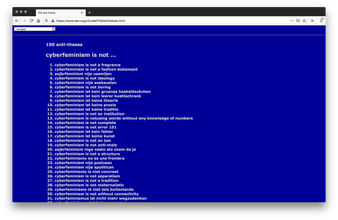
Screenshot, 2020, Firefox v76.0.1 on Mac OS 10.13.3; https://www.obn.org/cfundef/100antitheses.html
(103)
1997
La Tecnologia las ha Olvidado
Martha Burkle Bonecchi
“México Este trabajo realiza un recorrido lo más actual posible, de la reflexión de las mujeres sobre el terreno de las nuevas tecnologías. La autora inicia su propuesta analizando el discurso feminista de estudiosas del campo que han analizado el fenómeno desde las vivencias de sus países, Europa y los Estados Unidos. Las propuestas de Beijing, por su actualidad y trascendencia sobre la temática están también presentes. Por último, se realiza un breve recorrido por las formas de apropiación de los contenidos de los medios, realizadas por las mujeres en países subdesarrollados.” —Martha Burkle Bonecchi, abstract
published in Razon y Palabra 9:2
“México Este trabajo realiza un recorrido lo más actual posible, de la reflexión de las mujeres sobre el terreno de las nuevas tecnologías. La autora inicia su propuesta analizando el discurso feminista de estudiosas del campo que han analizado el fenómeno desde las vivencias de sus países, Europa y los Estados Unidos. Las propuestas de Beijing, por su actualidad y trascendencia sobre la temática están también presentes. Por último, se realiza un breve recorrido por las formas de apropiación de los contenidos de los medios, realizadas por las mujeres en países subdesarrollados.” —Martha Burkle Bonecchi, abstract
published in Razon y Palabra 9:2
(104)
1997
First Cyberfeminist International
Old Boys Network
There are countries where Cyberfeminism has had a long life and there are countries where Cyberfeminism has never had a life. Germany belongs to the latter …
Cyber and Feminism—two terms coined through recent history, ideology and evangelism. What happens when these two words collide? Cyberfeminism is a new and promising term. It suggests a fresh ideology, embracing the notions of “cyber” and “feminism” and all they signify. It creates a space for women to invent, dissect and alter the trajectories of the new technological and information era.
Cyberfeminism … Fresh ideology? New code of behavior? Artistic playground? Semiotic straightjacket? […]
For these purposes the Old Boys’ Network will be temporarily expanded to include eXXperts from all over the world.
1997, Old Boys Network, organizers (gathering, Hybrid Workspace, Documenta X, Kassel, Germany, September 20–28, 1997); excerpt from Cornelia Sollfrank, “1. Cyberfeminist International,” Old Boys Network, https://obn.org/obn/obn_pro/kassel/
This conference catalogue includes contributions by Susanne Ackers, Babeth, Ulrike Bergermann, Josephine Bosma, Shu Lea Cheang, Vali Djordjevic, Olga Egerova, Marina Gržinić, Sabine Helmers, Kathy Rae Huffman, Margarethe Jahrmann, Vesna Jankovic, Verena Kuni, Nikolina Manojlovic, Vesna Manojlovic, Diana McCarty, Alla Mitrofanova, Ingrid Molnar, Mathilde Mupe, Ellen Nonnenmacher, Helene von Oldenburg, Natalja Pershina, Daniela Alina Plewe, Corrine Petrus, Julianne Pierce, Claudia Reiche, Tamara Rouw, Rasa Smite, Cornelia Sollfrank, Debra Solomon, Josephine Starrs, Kerstin Weiberg, and Ina Wudtke.

Screenshot, 2020, Firefox v76.0.1 on Mac OS 10.13.3; https://www.obn.org/kassel/index.html
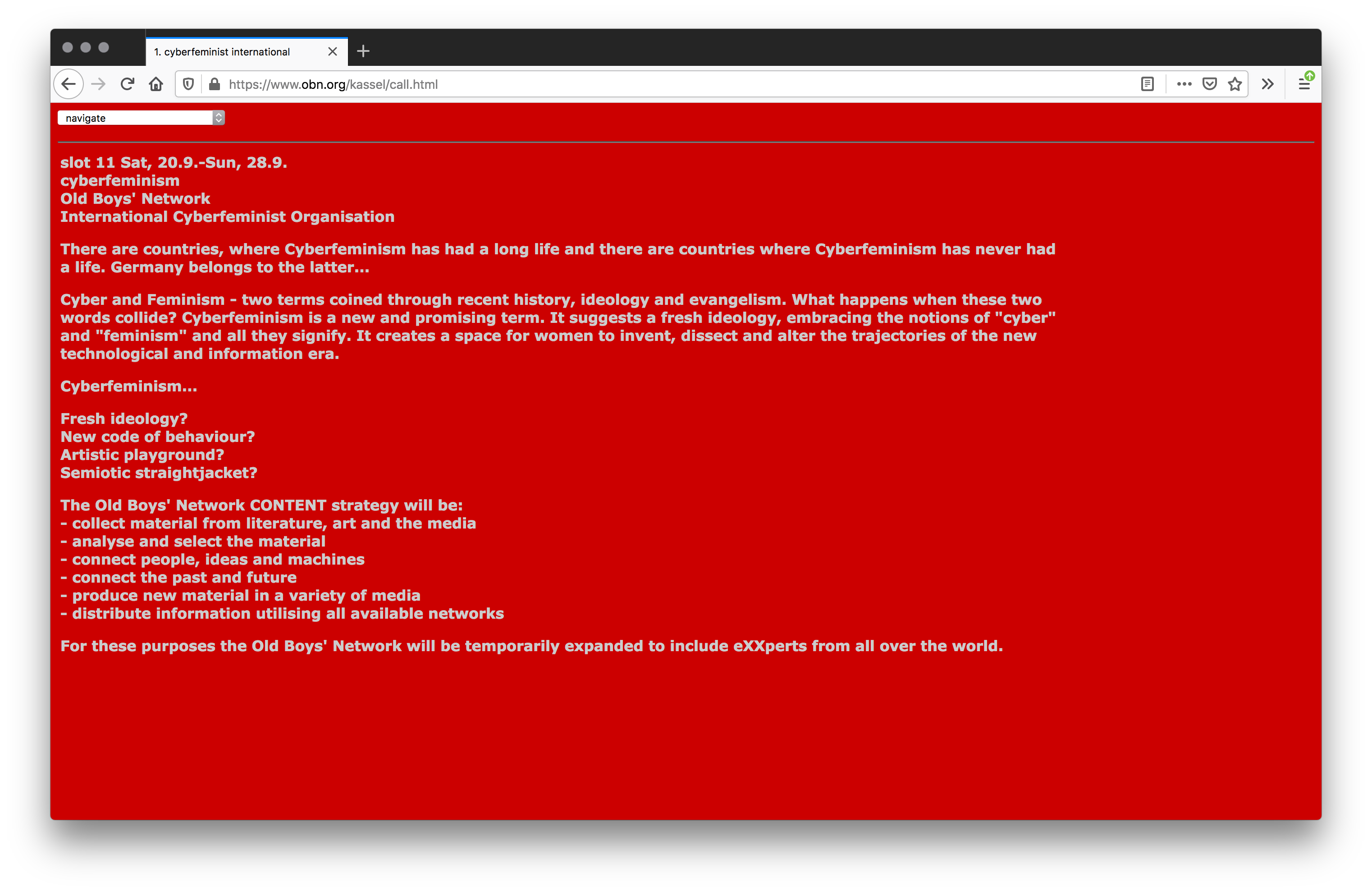
Screenshot, 2020, Firefox v76.0.1 on Mac OS 10.13.3; https://www.obn.org/kassel/call.html

“What is cyberfeminism?” artifact from https://www.obn.org/cfundef/index.html
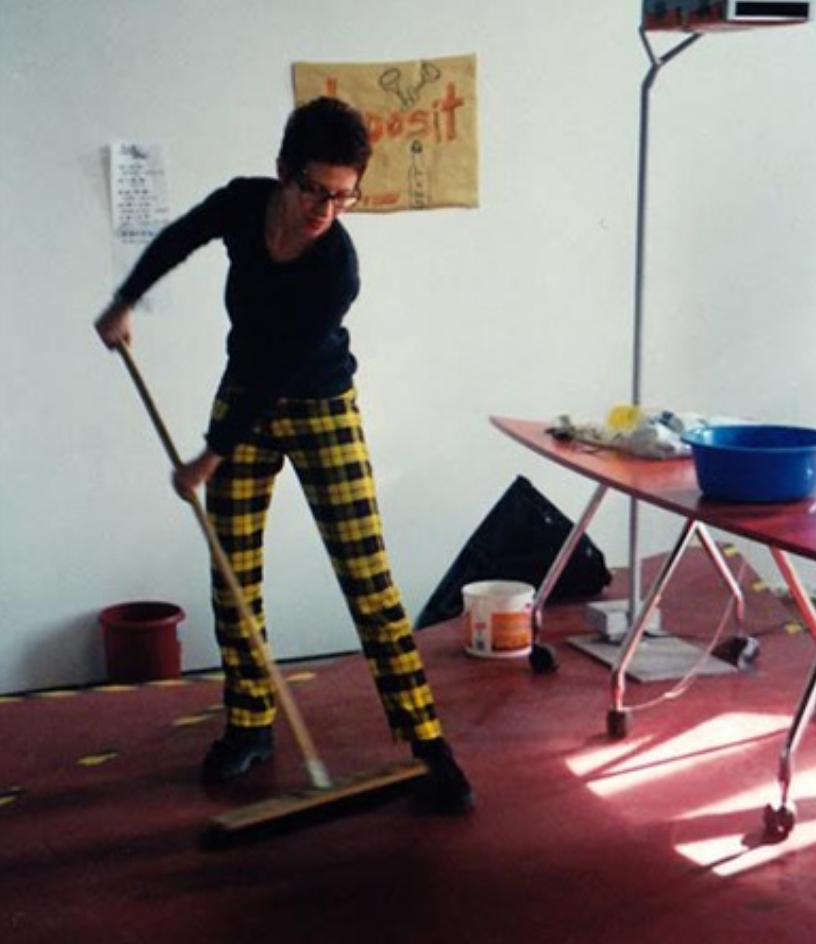
“Cornelia Sollfrank at The First Cyberfeminist International, part of Hybrid WorkSpace at documenta X, Kassel, 1997. Photo courtesy of Cornelia Sollfrank”; image from https://archive.ica.art/whats-on/diagramming-post-cyber-feminism
There are countries where Cyberfeminism has had a long life and there are countries where Cyberfeminism has never had a life. Germany belongs to the latter …
Cyber and Feminism—two terms coined through recent history, ideology and evangelism. What happens when these two words collide? Cyberfeminism is a new and promising term. It suggests a fresh ideology, embracing the notions of “cyber” and “feminism” and all they signify. It creates a space for women to invent, dissect and alter the trajectories of the new technological and information era.
Cyberfeminism … Fresh ideology? New code of behavior? Artistic playground? Semiotic straightjacket? […]
For these purposes the Old Boys’ Network will be temporarily expanded to include eXXperts from all over the world.
1997, Old Boys Network, organizers (gathering, Hybrid Workspace, Documenta X, Kassel, Germany, September 20–28, 1997); excerpt from Cornelia Sollfrank, “1. Cyberfeminist International,” Old Boys Network, https://obn.org/obn/obn_pro/kassel/
This conference catalogue includes contributions by Susanne Ackers, Babeth, Ulrike Bergermann, Josephine Bosma, Shu Lea Cheang, Vali Djordjevic, Olga Egerova, Marina Gržinić, Sabine Helmers, Kathy Rae Huffman, Margarethe Jahrmann, Vesna Jankovic, Verena Kuni, Nikolina Manojlovic, Vesna Manojlovic, Diana McCarty, Alla Mitrofanova, Ingrid Molnar, Mathilde Mupe, Ellen Nonnenmacher, Helene von Oldenburg, Natalja Pershina, Daniela Alina Plewe, Corrine Petrus, Julianne Pierce, Claudia Reiche, Tamara Rouw, Rasa Smite, Cornelia Sollfrank, Debra Solomon, Josephine Starrs, Kerstin Weiberg, and Ina Wudtke.

Screenshot, 2020, Firefox v76.0.1 on Mac OS 10.13.3; https://www.obn.org/kassel/index.html
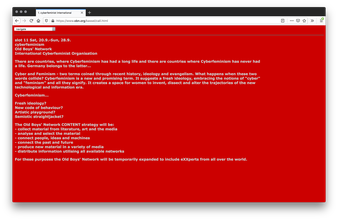
Screenshot, 2020, Firefox v76.0.1 on Mac OS 10.13.3; https://www.obn.org/kassel/call.html
“What is cyberfeminism?” artifact from https://www.obn.org/cfundef/index.html
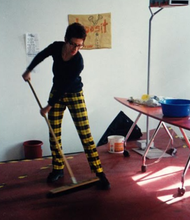
“Cornelia Sollfrank at The First Cyberfeminist International, part of Hybrid WorkSpace at documenta X, Kassel, 1997. Photo courtesy of Cornelia Sollfrank”; image from https://archive.ica.art/whats-on/diagramming-post-cyber-feminism
(105)
1997
Conceiving Ada
Lynn Hershman Leeson
Narrator: In 1843, Lord Byron’s daughter Ada Lovelace (x) invented the first computer program.
Ada Lovelace: I’m dreaming of an engine, like [Charles] Babbage’s, that will one day allow us to predict an infinite series of numerical outcomes.
Narrator: More than a century later, a DNA researcher obsessed with Ada’s life used that program to create her own code. The result changed both of their lives forever.
Emmy Coer: I feel as though Ada’s real life is in my computer, running along right next to mine.
Ada Lovelace: Memory. What is it? You can’t dissect it. Where does it come from? How do you store it?
1997, Lynn Hershman Leeson, dir. (1997; New York: Fox Lorber, 1999), 1 hr., 25 min.; transcript from trailer
https://www.lynnhershman.com/film/ https://www.youtube.com/watch?v=SL292JNUZGk

Image still from https://www.lynnhershman.com/film/
Narrator: In 1843, Lord Byron’s daughter Ada Lovelace (x) invented the first computer program.
Ada Lovelace: I’m dreaming of an engine, like [Charles] Babbage’s, that will one day allow us to predict an infinite series of numerical outcomes.
Narrator: More than a century later, a DNA researcher obsessed with Ada’s life used that program to create her own code. The result changed both of their lives forever.
Emmy Coer: I feel as though Ada’s real life is in my computer, running along right next to mine.
Ada Lovelace: Memory. What is it? You can’t dissect it. Where does it come from? How do you store it?
1997, Lynn Hershman Leeson, dir. (1997; New York: Fox Lorber, 1999), 1 hr., 25 min.; transcript from trailer
https://www.lynnhershman.com/film/ https://www.youtube.com/watch?v=SL292JNUZGk
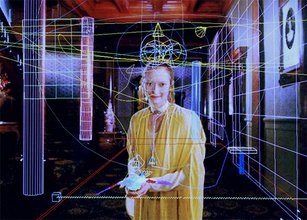
Image still from https://www.lynnhershman.com/film/
(106)
1997
Charting the Currents of the Third Wave
Catherine Orr
This is not everyone’s idea of a feminist community, but to some young women, cyberspace is the venue of choice. Just as baby boomers were the first generation to grow up with television as a primary influence, Generation X (a term often used to describe the current population of twentysomethings) will undoubtedly feel the effects of the Internet for a long time to come. Much has been written already about the uniqueness of the “space” that only can be accessed online. It is interesting, however, to consider exactly what this new expanse—neither real nor tangible—means for specific groups: women, men of color, lower-class people, rural people, the elderly, artists, writers, and so forth. Men, it has been estimated, account for 77 percent of the Internet’s total usage. This means that at any given moment, three men are online for every woman. At the same time, cyberspace is a forum that has, theoretically, more than enough room for everyone. (x)
1997, Catherine Orr, in “Third Wave Feminisms,” ed. Jacquelyn N. Zita, special issue, Hypatia 12, no. 3 (Summer 1997): pp. 29–45; excerpt p. 39
https://www.are.na/block/7650304 https://www.academia.edu/652474/Charting_the_Currents_of_the_Third_Wave
This is not everyone’s idea of a feminist community, but to some young women, cyberspace is the venue of choice. Just as baby boomers were the first generation to grow up with television as a primary influence, Generation X (a term often used to describe the current population of twentysomethings) will undoubtedly feel the effects of the Internet for a long time to come. Much has been written already about the uniqueness of the “space” that only can be accessed online. It is interesting, however, to consider exactly what this new expanse—neither real nor tangible—means for specific groups: women, men of color, lower-class people, rural people, the elderly, artists, writers, and so forth. Men, it has been estimated, account for 77 percent of the Internet’s total usage. This means that at any given moment, three men are online for every woman. At the same time, cyberspace is a forum that has, theoretically, more than enough room for everyone. (x)
1997, Catherine Orr, in “Third Wave Feminisms,” ed. Jacquelyn N. Zita, special issue, Hypatia 12, no. 3 (Summer 1997): pp. 29–45; excerpt p. 39
https://www.are.na/block/7650304 https://www.academia.edu/652474/Charting_the_Currents_of_the_Third_Wave
(107)
1997
FACES
Diana McCarty, Kathy Rae Huffman, Ushi Reiter, Valie Djordjevic
The faces list began operation in the Spring of 1997, a pragmatic response to the needs of a small but growing number of women in media. Initiated after a series of discussions that took place on the margins of European media arts and media culture events, via email, and in the dimly lit corners of bars begged the question “Where are the women?” (x) This constant question, and the desire to find out what women were doing with new media defined a gap in the existing structures and networks. Parallel to these discussions, the Face Settings project began to create informal settings that invited women to come to the table for a good meal and to discuss their work. It was the start to what would become an international network of women in media: artists, programmers, theorists, designers, curators, activists & djs, along with an assortment of other digital workers.
1997, Diana McCarty, Kathy Rae Huffman, Ushi Reiter and Vali Djordjevic, https://www.faces-l.net/
https://lists.servus.at/mailman/listinfo/faces-l

Image from Wayback Machine, December 04, 2001; Screenshot, 2020, Firefox v76.0.1 on Mac OS 10.13.3; https://web.archive.org/web/20011204022917/https://www.faces-l.net/
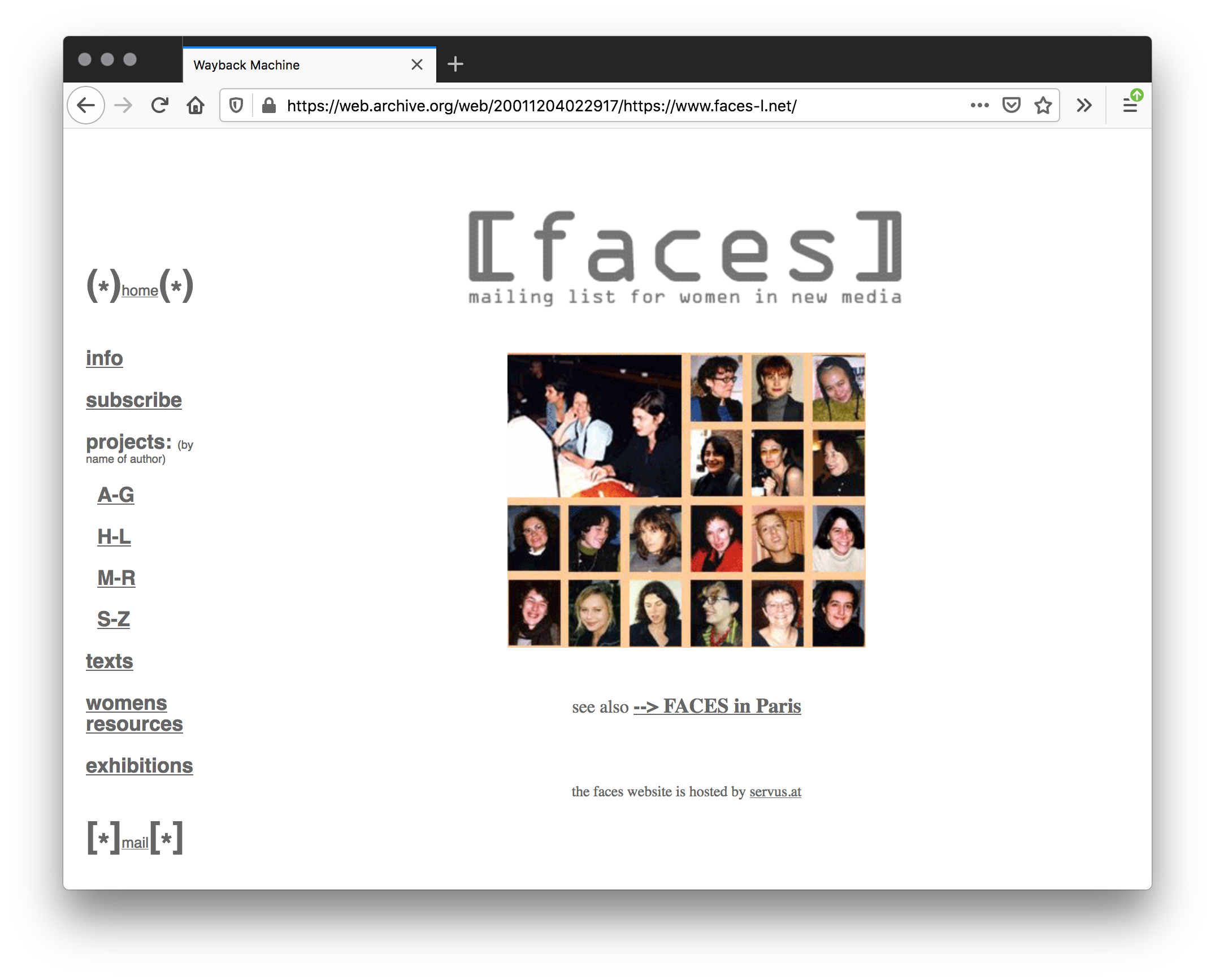
Wayback Machine, December 04, 2001; Screenshot, 2020, Firefox v76.0.1 on Mac OS 10.13.3; https://web.archive.org/web/20011204022917/https://www.faces-l.net/
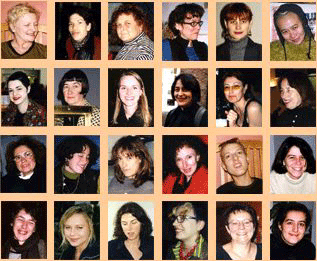
Image from Wayback Machine, December 04, 2001; Screenshot, 2020, Firefox v76.0.1 on Mac OS 10.13.3; https://web.archive.org/web/20011204022917/https://www.faces-l.net/
The faces list began operation in the Spring of 1997, a pragmatic response to the needs of a small but growing number of women in media. Initiated after a series of discussions that took place on the margins of European media arts and media culture events, via email, and in the dimly lit corners of bars begged the question “Where are the women?” (x) This constant question, and the desire to find out what women were doing with new media defined a gap in the existing structures and networks. Parallel to these discussions, the Face Settings project began to create informal settings that invited women to come to the table for a good meal and to discuss their work. It was the start to what would become an international network of women in media: artists, programmers, theorists, designers, curators, activists & djs, along with an assortment of other digital workers.
1997, Diana McCarty, Kathy Rae Huffman, Ushi Reiter and Vali Djordjevic, https://www.faces-l.net/
https://lists.servus.at/mailman/listinfo/faces-l

Image from Wayback Machine, December 04, 2001; Screenshot, 2020, Firefox v76.0.1 on Mac OS 10.13.3; https://web.archive.org/web/20011204022917/https://www.faces-l.net/
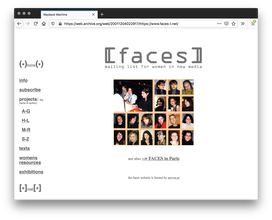
Wayback Machine, December 04, 2001; Screenshot, 2020, Firefox v76.0.1 on Mac OS 10.13.3; https://web.archive.org/web/20011204022917/https://www.faces-l.net/
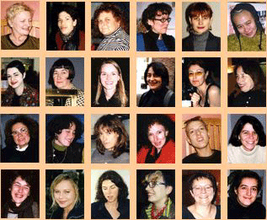
Image from Wayback Machine, December 04, 2001; Screenshot, 2020, Firefox v76.0.1 on Mac OS 10.13.3; https://web.archive.org/web/20011204022917/https://www.faces-l.net/
(108)
1997
HTMLles Festival
Studio XX
Taking place in Montreal, HTMLles is a festival in media arts and digital culture that brings together local, national and international artists, scholars, and activists who are passionate about critical engagement with new technologies from feminist perspectives. Each edition explores urgent socio-political questions through a series of exhibitions, round tables, conferences, performances and workshops.
Initiated in 1997, the festival began as an international platform for introducing women’s web art. Collaborating closely with partner organizations, The HTMLles has become a multi-site festival dedicated to the presentation of women’s, trans, and gender non-conforming artists’ independent media artworks in a transdisciplinary environment that strives for anti-oppression.
1997, Studio XX, https://htmlles.net/
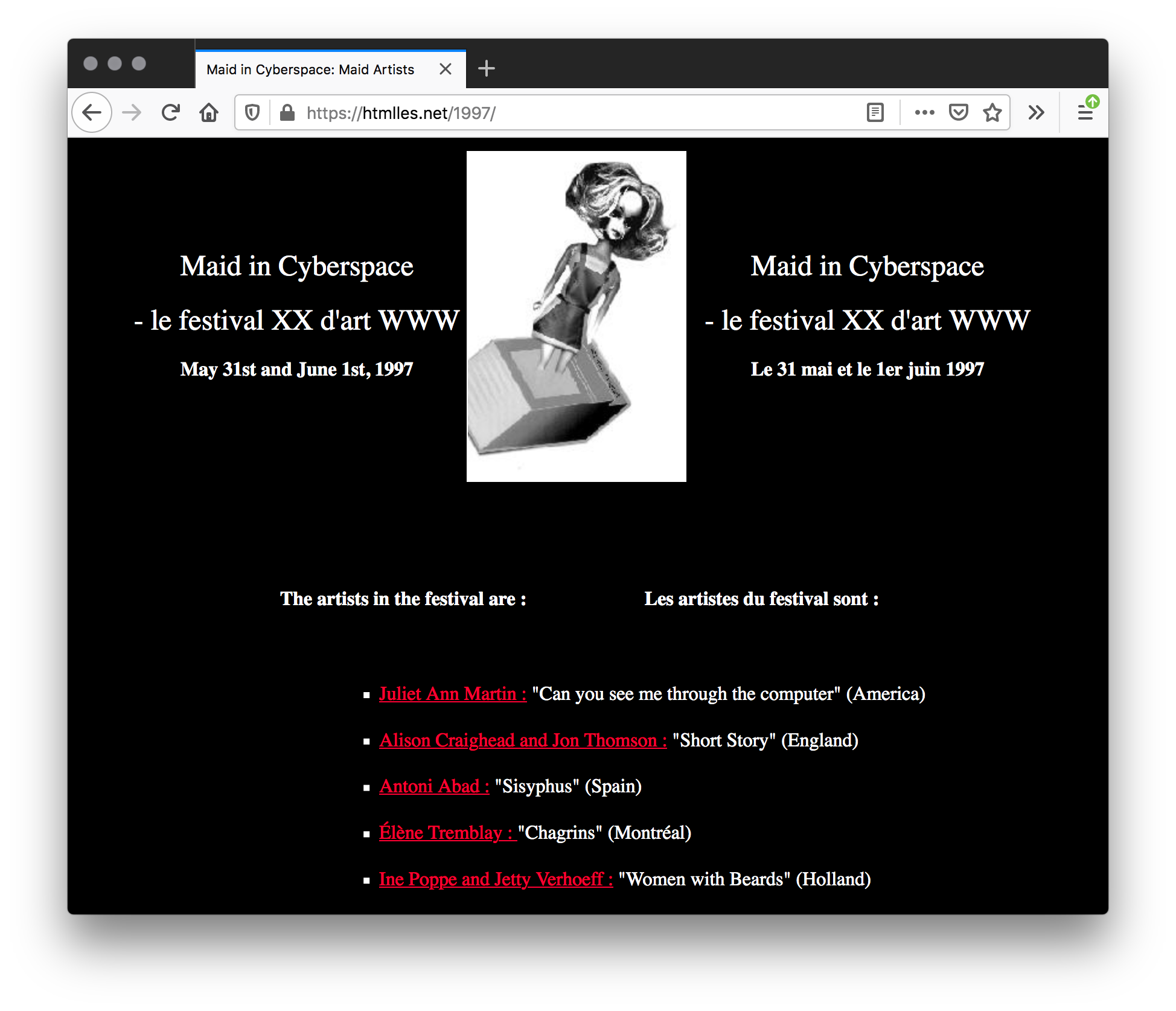
1997 festival website, Screenshot, 2020, Firefox v76.0.1 on Mac OS 10.13.3; https://htmlles.net/1997/index.html

Artifact from https://htmlles.net/1997/index.html
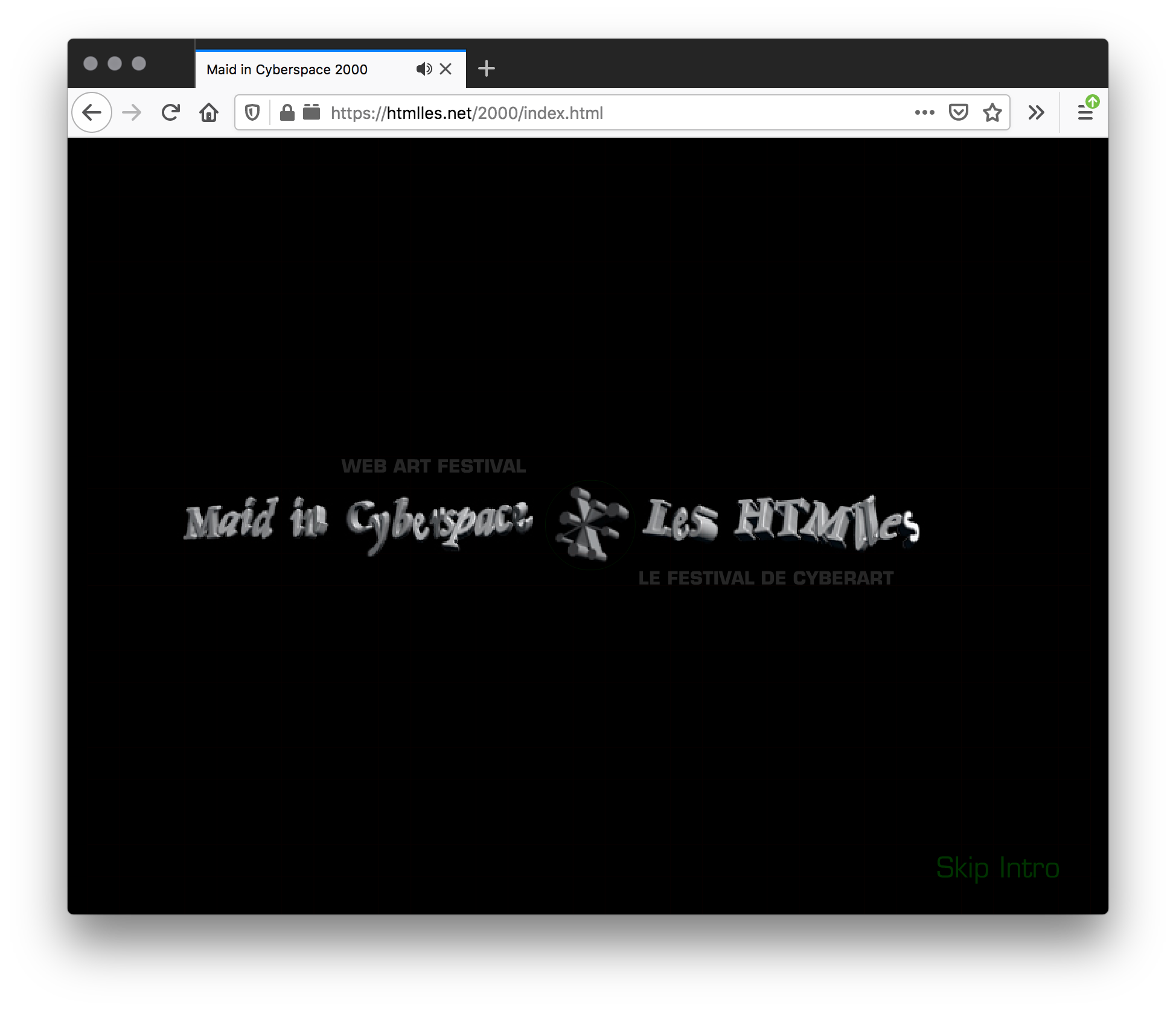
2000 festival website, Screenshot, 2020, Firefox v76.0.1 on Mac OS 10.13.3; https://htmlles.net/2000/
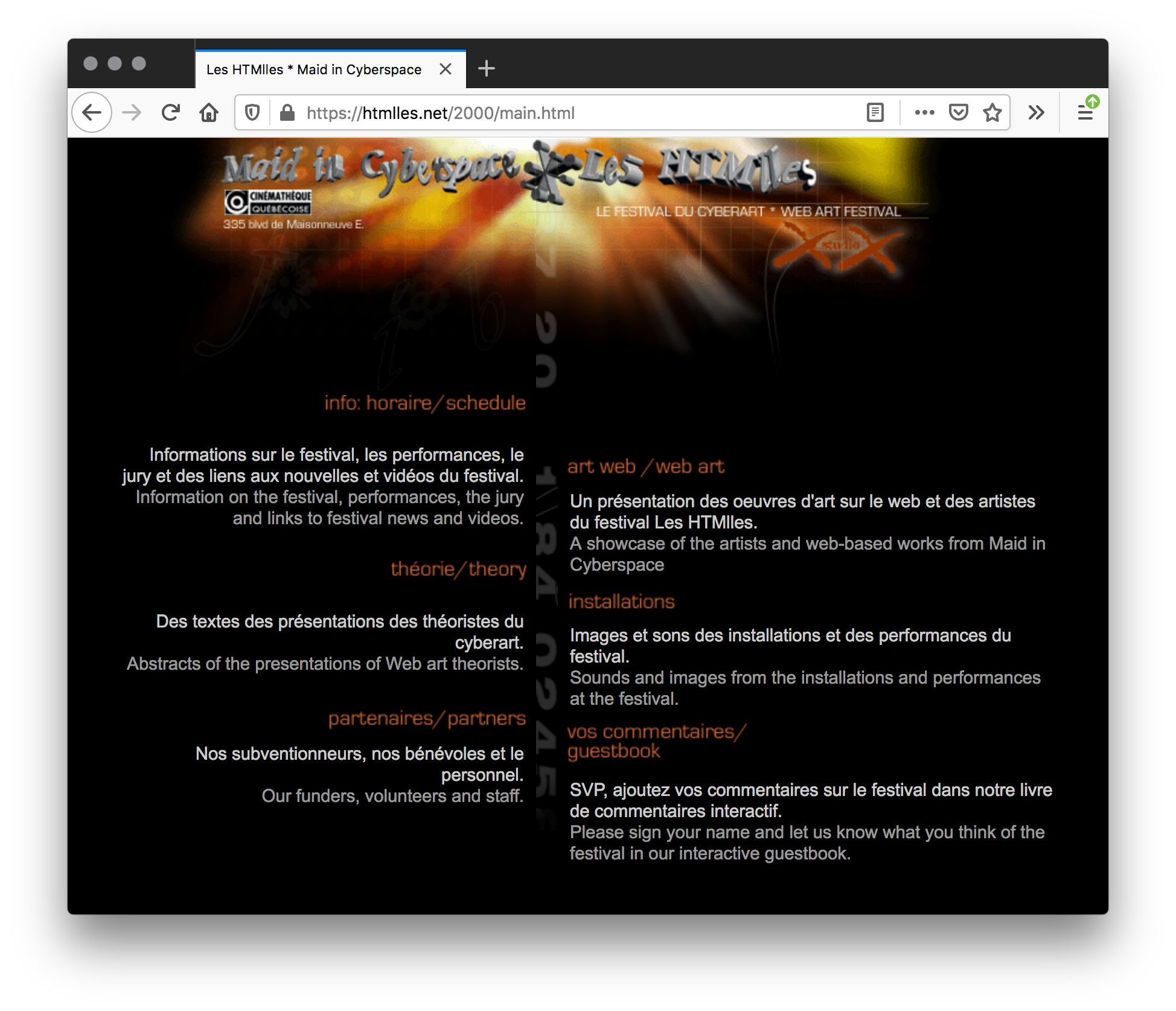
Additional page from 2000 festival website, Screenshot, 2020, Firefox v76.0.1 on Mac OS 10.13.3; https://htmlles.net/2000/main.html
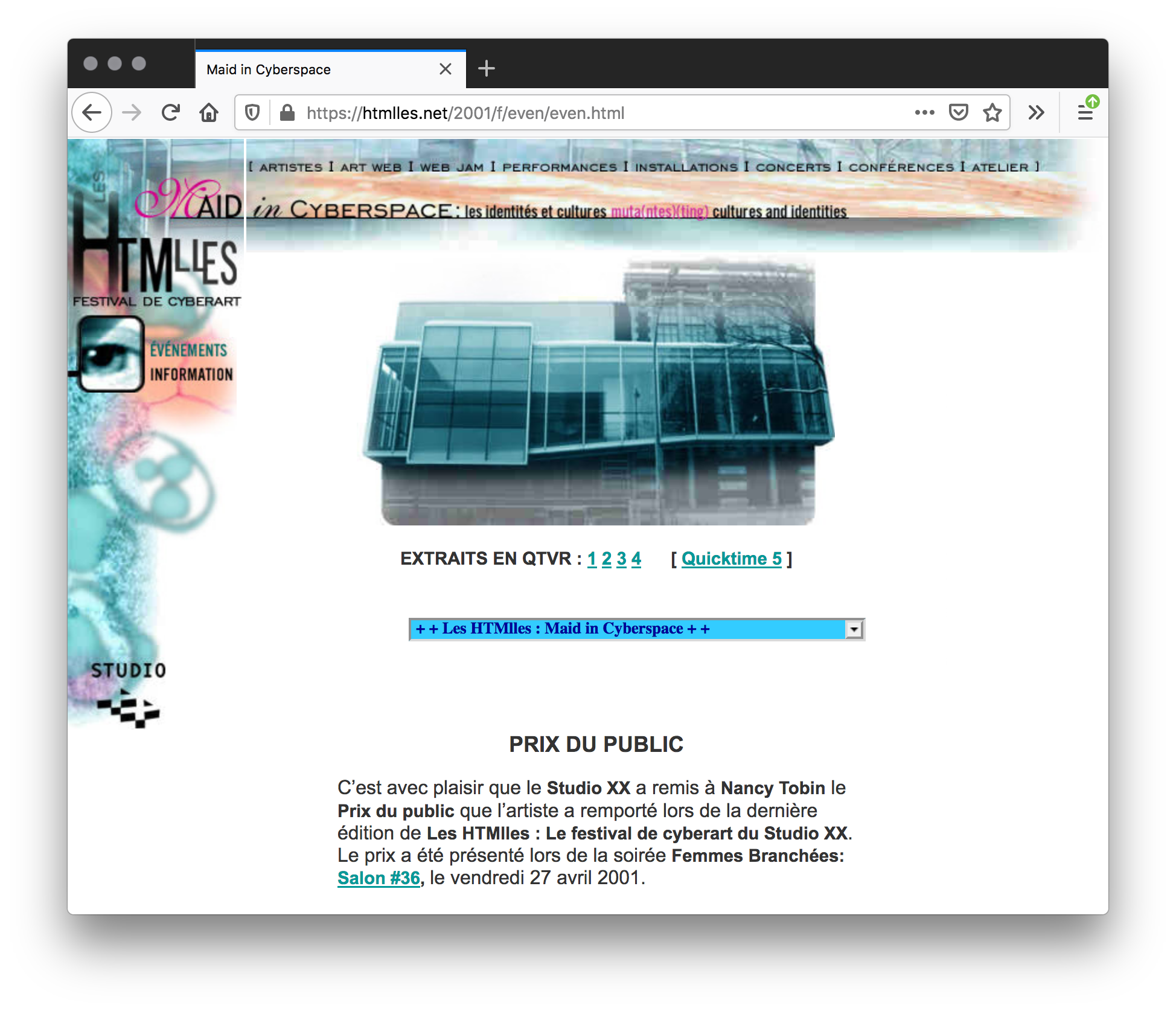
2001 festival website, Screenshot, 2020, Firefox v76.0.1 on Mac OS 10.13.3; https://htmlles.net/2001/
Taking place in Montreal, HTMLles is a festival in media arts and digital culture that brings together local, national and international artists, scholars, and activists who are passionate about critical engagement with new technologies from feminist perspectives. Each edition explores urgent socio-political questions through a series of exhibitions, round tables, conferences, performances and workshops.
Initiated in 1997, the festival began as an international platform for introducing women’s web art. Collaborating closely with partner organizations, The HTMLles has become a multi-site festival dedicated to the presentation of women’s, trans, and gender non-conforming artists’ independent media artworks in a transdisciplinary environment that strives for anti-oppression.
1997, Studio XX, https://htmlles.net/
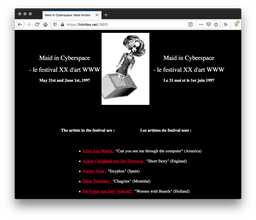
1997 festival website, Screenshot, 2020, Firefox v76.0.1 on Mac OS 10.13.3; https://htmlles.net/1997/index.html

Artifact from https://htmlles.net/1997/index.html

2000 festival website, Screenshot, 2020, Firefox v76.0.1 on Mac OS 10.13.3; https://htmlles.net/2000/
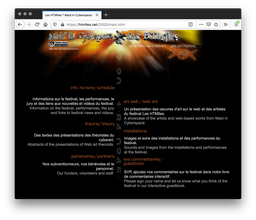
Additional page from 2000 festival website, Screenshot, 2020, Firefox v76.0.1 on Mac OS 10.13.3; https://htmlles.net/2000/main.html
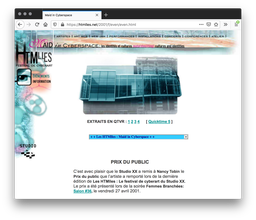
2001 festival website, Screenshot, 2020, Firefox v76.0.1 on Mac OS 10.13.3; https://htmlles.net/2001/
(109)
1997–
2005
Adventures of Josie True
Mary Flanagan
The Adventures of Josie True is a web-based historical adventure game (x) for girls. The hero of the game is Chinese-American Josie True, a regular girl who becomes involved in intrigue across time and space as she tries to find her inventor-turned-teacher Ms. Trombone. She time travels with one of Ms. Trombone’s inventions, the Intellicat.
During their travels, they meet a host of historical figures including women from history such as Bessie Coleman, the first African American woman pilot. At each stop in the journey, there are fun, rewarding activities to play in order to find Ms. Trombone, stop the artifact thieves, help Bessie Coleman at her airshow, and much more!
1997, Mary Flanagan, http://www.josietrue.com/
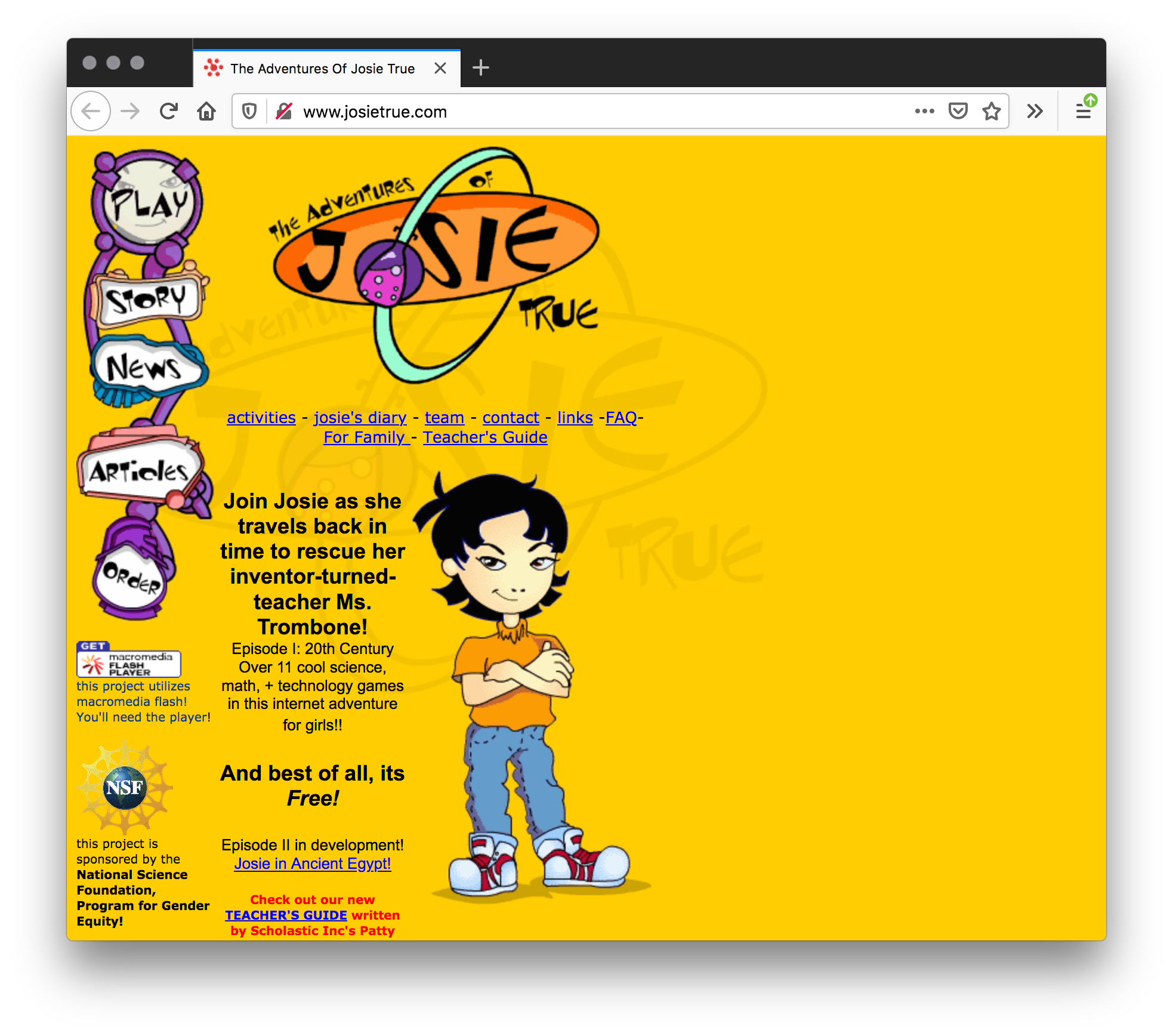
Screenshot, 2020, Firefox v76.0.1 on Mac OS 10.13.3; http://www.josietrue.com/
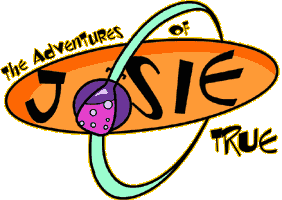
artifact from http://www.josietrue.com/

artifact from http://www.josietrue.com/
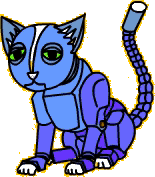
artifact from http://www.josietrue.com/
The Adventures of Josie True is a web-based historical adventure game (x) for girls. The hero of the game is Chinese-American Josie True, a regular girl who becomes involved in intrigue across time and space as she tries to find her inventor-turned-teacher Ms. Trombone. She time travels with one of Ms. Trombone’s inventions, the Intellicat.
During their travels, they meet a host of historical figures including women from history such as Bessie Coleman, the first African American woman pilot. At each stop in the journey, there are fun, rewarding activities to play in order to find Ms. Trombone, stop the artifact thieves, help Bessie Coleman at her airshow, and much more!
1997, Mary Flanagan, http://www.josietrue.com/
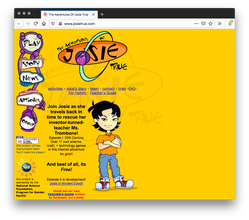
Screenshot, 2020, Firefox v76.0.1 on Mac OS 10.13.3; http://www.josietrue.com/
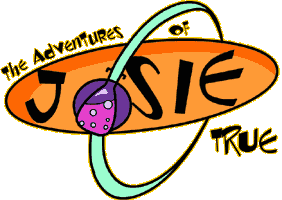
artifact from http://www.josietrue.com/

artifact from http://www.josietrue.com/
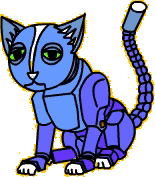
artifact from http://www.josietrue.com/
(110)
1997
Razor Girls: Genre and Gender in Cyberpunk Fiction
Lauraine Leblanc
Imagining women as literary cyborgs in cyberpunk fiction presents a radical shift in conceptualizations of gender. Technology has always had profound effects on culture, on language and on ideology; technological innovation not only introduces new words, concepts and patterns into our culture, but radically alters old terminologies and undermines traditional ideologies. In creating these female cyborg subjects, [William] Gibson, [Pat] Cadigan, and [Terry] Mixon have begun to imagine the impact of technology upon human consciousness. In creating female-gendered cyborgs with male-gendered attributes, Gibson and Cadigan begin to depict “post-gender” beings. However, in their creation of such beings, they are still dependent upon the recognition of traditionally male and female gender characteristics. It is only in Mixon’s depiction of the cyborg character as both human and machine that we find a cyborg which begins to transcend gender by creating multiple split subjects.
1997, Lauraine Leblanc, Woman and Language 20, no. 1 (Spring 1997): pp. 71–76; excerpt p. 76
http://project.cyberpunk.ru/idb//genre_and_gender_in_cyberpunk_fiction.html
Imagining women as literary cyborgs in cyberpunk fiction presents a radical shift in conceptualizations of gender. Technology has always had profound effects on culture, on language and on ideology; technological innovation not only introduces new words, concepts and patterns into our culture, but radically alters old terminologies and undermines traditional ideologies. In creating these female cyborg subjects, [William] Gibson, [Pat] Cadigan, and [Terry] Mixon have begun to imagine the impact of technology upon human consciousness. In creating female-gendered cyborgs with male-gendered attributes, Gibson and Cadigan begin to depict “post-gender” beings. However, in their creation of such beings, they are still dependent upon the recognition of traditionally male and female gender characteristics. It is only in Mixon’s depiction of the cyborg character as both human and machine that we find a cyborg which begins to transcend gender by creating multiple split subjects.
1997, Lauraine Leblanc, Woman and Language 20, no. 1 (Spring 1997): pp. 71–76; excerpt p. 76
http://project.cyberpunk.ru/idb//genre_and_gender_in_cyberpunk_fiction.html
(111)
1997
“Trapped by the Body”? Telepresence Technologies and Transgendered Performance in Feminist and Lesbian Rewritings of Cyberpunk Fiction
Thomas Foster
Allucquère Rosanne Stone’s recent work on the status of embodiment in virtual systems [accounts] for the existence of a significant number of popular narratives by women writers about virtual reality, despite Ross’s characterization of cyberpunk fiction as inherently masculinist. In particular, Stone’s work helps explain the predominance of themes of gender and sexual performativity or cross-identification in these narratives about cyberspace. I have written elsewhere about the relevance of theories of performativity to narratives of cyborg embodiment, but this essay considers the relevance of those theories to virtual reality computer interfaces and computer simulations, which tend to be represented popularly as technologies of disembodiment. To what extent do theories and practices of subversive mimicry and performativity, such as drag or butch-femme, function as a cultural framework for constructing the meaning of virtual reality and telepresence technologies?
1997, Thomas Foster, in “ Technocriticism and Hypernarrative,” ed. N. Katherine Hayles, special issue, Modern Fiction Studies 43, no. 3 (Fall 1997): pp. 708–742; excerpt p. 709
Allucquère Rosanne Stone’s recent work on the status of embodiment in virtual systems [accounts] for the existence of a significant number of popular narratives by women writers about virtual reality, despite Ross’s characterization of cyberpunk fiction as inherently masculinist. In particular, Stone’s work helps explain the predominance of themes of gender and sexual performativity or cross-identification in these narratives about cyberspace. I have written elsewhere about the relevance of theories of performativity to narratives of cyborg embodiment, but this essay considers the relevance of those theories to virtual reality computer interfaces and computer simulations, which tend to be represented popularly as technologies of disembodiment. To what extent do theories and practices of subversive mimicry and performativity, such as drag or butch-femme, function as a cultural framework for constructing the meaning of virtual reality and telepresence technologies?
1997, Thomas Foster, in “ Technocriticism and Hypernarrative,” ed. N. Katherine Hayles, special issue, Modern Fiction Studies 43, no. 3 (Fall 1997): pp. 708–742; excerpt p. 709
(112)
1997
My Body, A Wunderkammer
Shelley Jackson
I began inserting the pages of books into my vagina as soon as I located that orifice. In fact, my libidinal attachment to books sped my exploration. I was in the habit of tearing off the corners of pages as I read and chewing them into pulp. I became quite a connoisseur of the different flavors and textures. You could truthfully call me a voracious reader. […] Though labeled a vandal and a hooligan by librarians, I have always felt the warmest affection for books. Why else would I want to ingest them? Later on I read a description of this malady, considered a nervous ailment. I was lumped in with eaters of mud and sand, which seems to me quite another thing, though not without appeal. There is a good word for it: pica, which also, appropriately enough in my case, is a unit of size used in measuring type. (Spelled pika, it’s a little rodent.) I did not consider myself to be suffering a nervous ailment, of course. I liked the taste of books. New white paper, pulpy yellowing paper (dissolves), glossy coated paper that squeaked between the teeth, whose sharp triangular edges needed to be cautiously bitten blunt, I liked it, and also liked the cud I chewed it into, and considered it as good as gum, though lacking in flavor.
1997, Shelley Jackson, https://www.altx.com/thebody; excerpt from “Vagina,” https://www.altx.com/thebody/vagina.html

Image from https://www.altx.com/thebody/
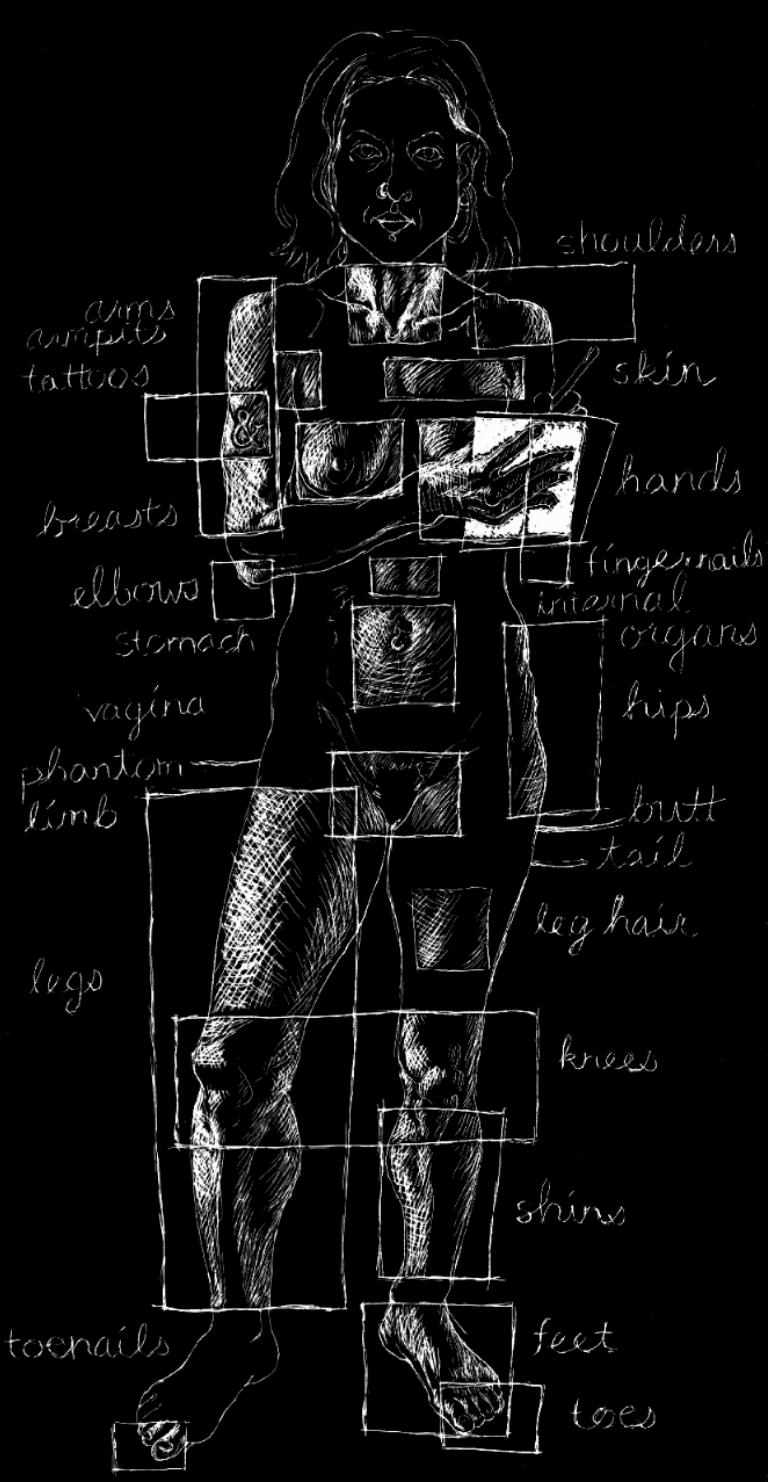
Screenshot, 2020, Firefox v76.0.1 on Mac OS 10.13.3; https://www.altx.com/thebody/body.html

Screenshot, 2020, Firefox v76.0.1 on Mac OS 10.13.3; https://www.altx.com/thebody/knees.html
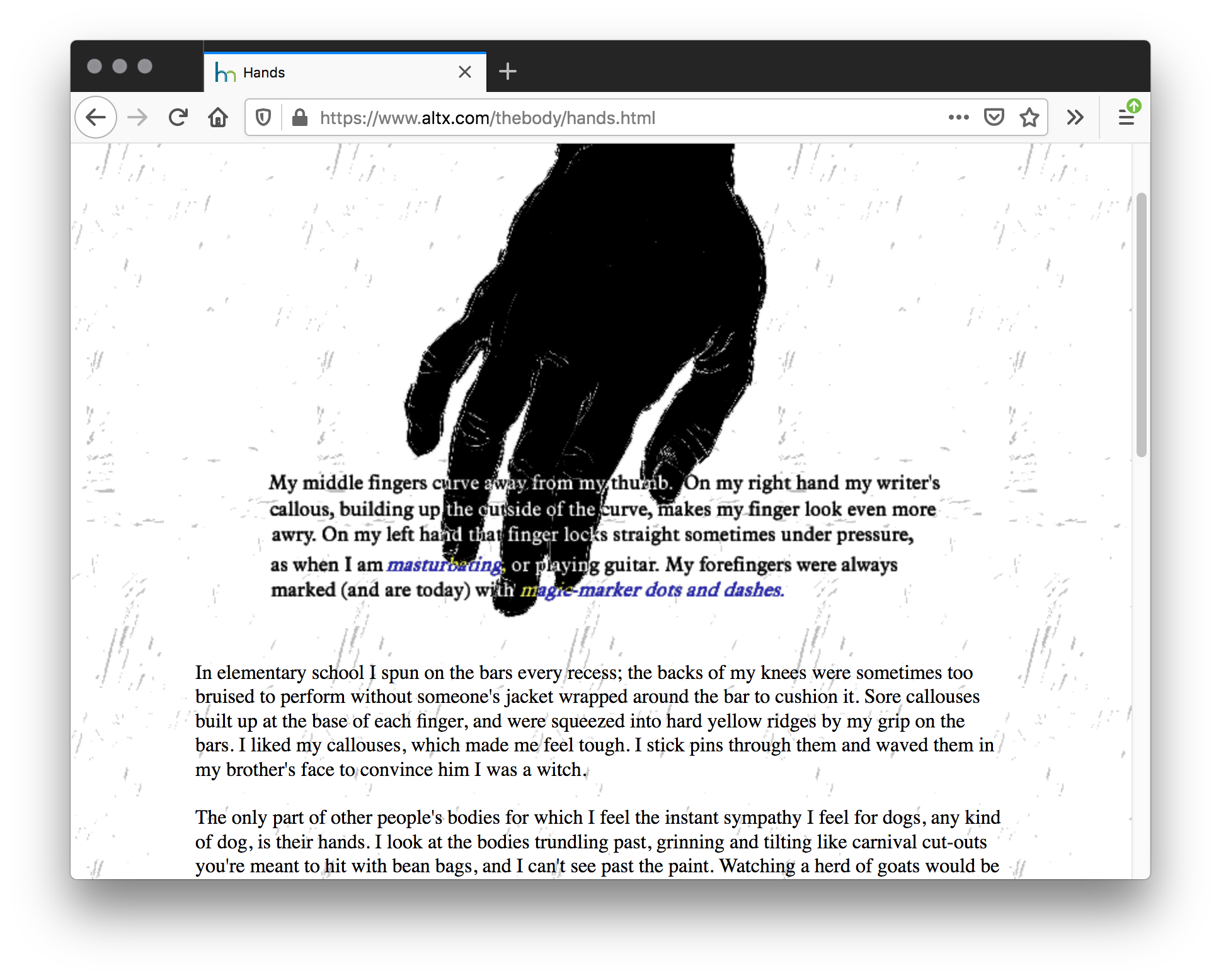
Screenshot, 2020, Firefox v76.0.1 on Mac OS 10.13.3; https://www.altx.com/thebody/hands.html
I began inserting the pages of books into my vagina as soon as I located that orifice. In fact, my libidinal attachment to books sped my exploration. I was in the habit of tearing off the corners of pages as I read and chewing them into pulp. I became quite a connoisseur of the different flavors and textures. You could truthfully call me a voracious reader. […] Though labeled a vandal and a hooligan by librarians, I have always felt the warmest affection for books. Why else would I want to ingest them? Later on I read a description of this malady, considered a nervous ailment. I was lumped in with eaters of mud and sand, which seems to me quite another thing, though not without appeal. There is a good word for it: pica, which also, appropriately enough in my case, is a unit of size used in measuring type. (Spelled pika, it’s a little rodent.) I did not consider myself to be suffering a nervous ailment, of course. I liked the taste of books. New white paper, pulpy yellowing paper (dissolves), glossy coated paper that squeaked between the teeth, whose sharp triangular edges needed to be cautiously bitten blunt, I liked it, and also liked the cud I chewed it into, and considered it as good as gum, though lacking in flavor.
1997, Shelley Jackson, https://www.altx.com/thebody; excerpt from “Vagina,” https://www.altx.com/thebody/vagina.html

Image from https://www.altx.com/thebody/

Screenshot, 2020, Firefox v76.0.1 on Mac OS 10.13.3; https://www.altx.com/thebody/body.html
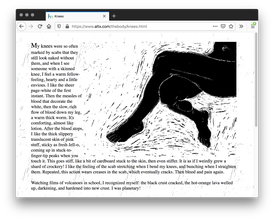
Screenshot, 2020, Firefox v76.0.1 on Mac OS 10.13.3; https://www.altx.com/thebody/knees.html
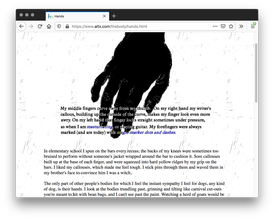
Screenshot, 2020, Firefox v76.0.1 on Mac OS 10.13.3; https://www.altx.com/thebody/hands.html
(113)
1997
Female Artists Manipulate the New Media at Art-Tech
Ann Elliott Sherman
Contrary to stereotype, women aren’t necessarily technophobic. It’s just that, for most of us, technology is less a toy that we can’t resist and more a tool for getting the job done. (x) For all its variety, the Chik Tek ‘97: Women Artists Defining Technology exhibit at Art-Tech in San Jose pretty much bears out this generalization. Most of the 14 artists experimenting with new media are not as concerned with the technology itself as with how effectively it allows them to convey a complex, multilayered world view.
1997, Ann Elliott Sherman, Chik Tek ‘97, Metroactive Arts, http://www.metroactive.com/papers/metro/12.11.97/arts-9750.html
Contrary to stereotype, women aren’t necessarily technophobic. It’s just that, for most of us, technology is less a toy that we can’t resist and more a tool for getting the job done. (x) For all its variety, the Chik Tek ‘97: Women Artists Defining Technology exhibit at Art-Tech in San Jose pretty much bears out this generalization. Most of the 14 artists experimenting with new media are not as concerned with the technology itself as with how effectively it allows them to convey a complex, multilayered world view.
1997, Ann Elliott Sherman, Chik Tek ‘97, Metroactive Arts, http://www.metroactive.com/papers/metro/12.11.97/arts-9750.html
(114)
1997
Where is Feminism in Cyberfeminism?
Faith Wilding
Cybergrrlish lines of flight are important as vectors of investigation, research, invention, and affirmation. But these can t replace the hard work that is needed to identify and change the gendered structures, content, and effects of the new technologies on women worldwide. If it is true, as Sadie Plant argues that “women have not merely had a minor part to play in the emergence of the digital machines … [that] women have been the simulators, assemblers, and programmers of the digital machines,” then why are there so few women in visible positions of leadership in the electronic world? Why are women a tiny percentage of computer programmers, software designers, systems analysts, and hackers, while they are the majority of teletypers, chip-assemblers and installers, and lowskilled tele-operators that keep the global data and infobanks operating? Why is the popular perception still that women are technophobic? Sadly, the lesson of Ada Lovelace is that even though women have made major contributions to the invention of computers and computer programming, this hasn’t changed the perception—or reality—of women’s condition in the new technologies. Being bad grrls on the Internet is not by itself going to challenge the status quo, though it may provide refreshing moments of iconoclastic delirium. But if grrrl energy and invention were to be coupled with engaged political theory and practice … Imagine!
1997, Faith Wilding, Old Boys Network, https://www.obn.org/cfundef/faith_def.html
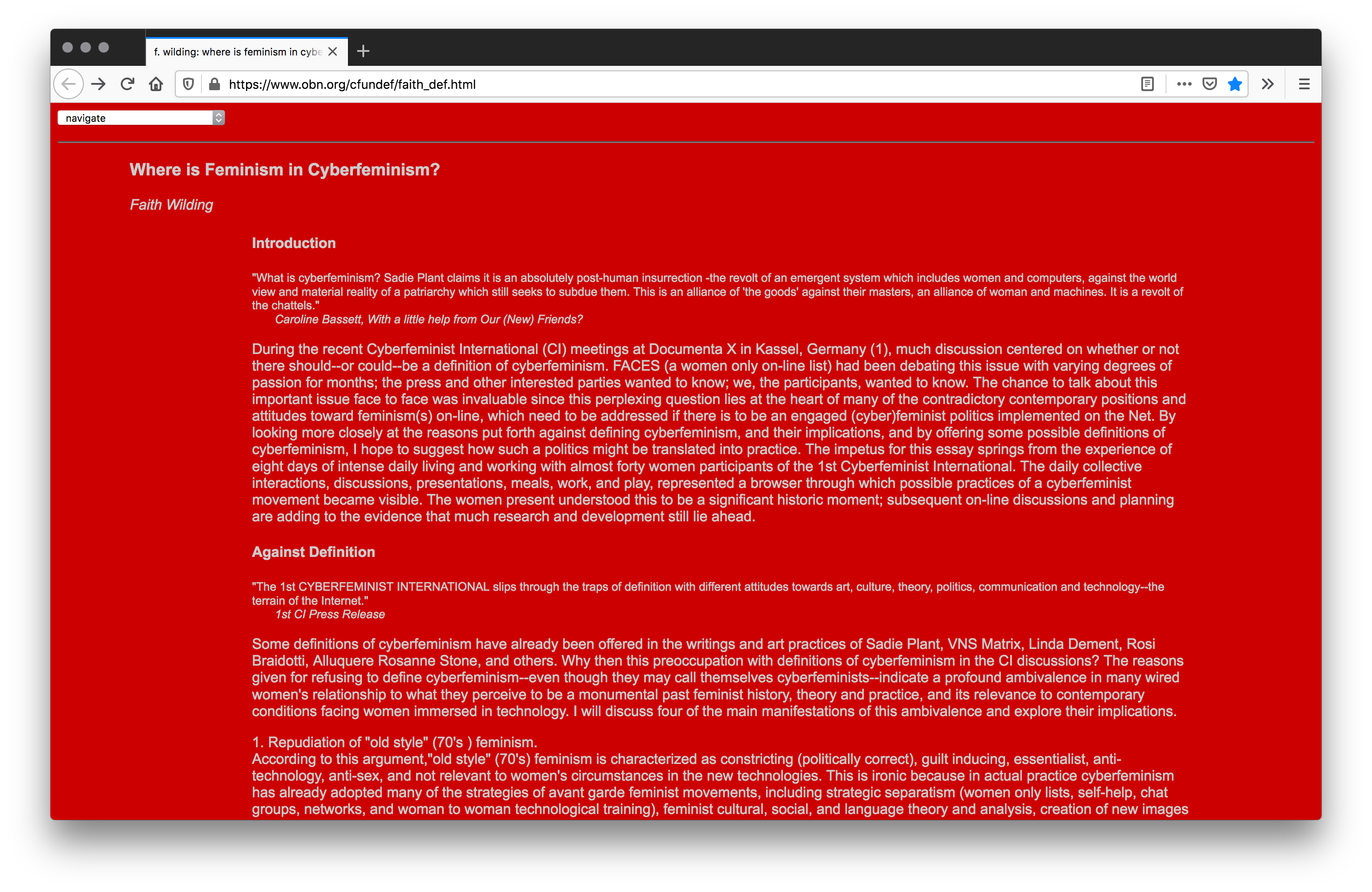
Screenshot, 2020, Firefox v76.0.1 on Mac OS 10.13.3; https://www.obn.org/cfundef/faith_def.html
Cybergrrlish lines of flight are important as vectors of investigation, research, invention, and affirmation. But these can t replace the hard work that is needed to identify and change the gendered structures, content, and effects of the new technologies on women worldwide. If it is true, as Sadie Plant argues that “women have not merely had a minor part to play in the emergence of the digital machines … [that] women have been the simulators, assemblers, and programmers of the digital machines,” then why are there so few women in visible positions of leadership in the electronic world? Why are women a tiny percentage of computer programmers, software designers, systems analysts, and hackers, while they are the majority of teletypers, chip-assemblers and installers, and lowskilled tele-operators that keep the global data and infobanks operating? Why is the popular perception still that women are technophobic? Sadly, the lesson of Ada Lovelace is that even though women have made major contributions to the invention of computers and computer programming, this hasn’t changed the perception—or reality—of women’s condition in the new technologies. Being bad grrls on the Internet is not by itself going to challenge the status quo, though it may provide refreshing moments of iconoclastic delirium. But if grrrl energy and invention were to be coupled with engaged political theory and practice … Imagine!
1997, Faith Wilding, Old Boys Network, https://www.obn.org/cfundef/faith_def.html

Screenshot, 2020, Firefox v76.0.1 on Mac OS 10.13.3; https://www.obn.org/cfundef/faith_def.html
(115)
1997
Mujeres en Red. El Periódico Feminista [Women in Network. The Feminist Newspaper]
Montserrat Boix
Es absolutamente imposible la liberación de los pueblos y su desarrollo democrático sin contar con la igualdad de derechos de hombres y mujeres. Ni siquiera en las situaciones más duras puede olvidarse o posponerse esta lucha. A lo largo de la historia, las mujeres a menudo han renunciado o aplazado la reivindicación de sus derechos “por el bien común”. En todo el mundo, en todas las sociedades, las mujeres pagan siempre el precio más alto para lograr el cambio y la evolución.
The liberation of peoples and their democratic development is absolutely impossible without the equal rights of men and women. Even in the harshest situations, this fight cannot be forgotten or postponed. Throughout history, women have often renounced or postponed claiming their rights “for the common good.” Around the world, in all societies, women always pay the highest price for change and evolution.
1997, Montserrat Boix, https://web.archive.org/web/20020928034320/http://www.mujeresenred.net/
http://www.mujeresenred.net/spip.php?mot81&var_mode=calcul
Madrid

Wayback Machine, Sept 28, 2002; Screenshot, 2020, Firefox v76.0.1 on Mac OS 10.13.3; https://web.archive.org/web/20020928034320/http://www.mujeresenred.net/

Logo from Wayback Machine, Sept 28, 2002; https://web.archive.org/web/20020928034320/http://www.mujeresenred.net/

Background image from Wayback Machine, Sept 28, 2002; https://web.archive.org/web/20020928034320/http://www.mujeresenred.net/

Logo from Agenda Feminista subpage, Wayback Machine, Sept 28, 2002; https://web.archive.org/web/20020928034320/http://www.mujeresenred.net/
Es absolutamente imposible la liberación de los pueblos y su desarrollo democrático sin contar con la igualdad de derechos de hombres y mujeres. Ni siquiera en las situaciones más duras puede olvidarse o posponerse esta lucha. A lo largo de la historia, las mujeres a menudo han renunciado o aplazado la reivindicación de sus derechos “por el bien común”. En todo el mundo, en todas las sociedades, las mujeres pagan siempre el precio más alto para lograr el cambio y la evolución.
The liberation of peoples and their democratic development is absolutely impossible without the equal rights of men and women. Even in the harshest situations, this fight cannot be forgotten or postponed. Throughout history, women have often renounced or postponed claiming their rights “for the common good.” Around the world, in all societies, women always pay the highest price for change and evolution.
1997, Montserrat Boix, https://web.archive.org/web/20020928034320/http://www.mujeresenred.net/
http://www.mujeresenred.net/spip.php?mot81&var_mode=calcul
Madrid

Wayback Machine, Sept 28, 2002; Screenshot, 2020, Firefox v76.0.1 on Mac OS 10.13.3; https://web.archive.org/web/20020928034320/http://www.mujeresenred.net/

Logo from Wayback Machine, Sept 28, 2002; https://web.archive.org/web/20020928034320/http://www.mujeresenred.net/

Background image from Wayback Machine, Sept 28, 2002; https://web.archive.org/web/20020928034320/http://www.mujeresenred.net/

Logo from Agenda Feminista subpage, Wayback Machine, Sept 28, 2002; https://web.archive.org/web/20020928034320/http://www.mujeresenred.net/
(116)
1997
Buy One Get One
Shu Lea Cheang
Buy One Get One derives its name from happy hour at Sphinx in Soi Silom, Bangkok. The project explores a digital (co)existence that is borne out of net technology. While Southeast Asia builds Cyberjaya and Africa safaris on the net, we travel to test the limits of national and electronic border patrols. (x) Two digital suitcases modeled after Japanese style bento box, equipped with powerbook, cameras, phone line and a hino maru bento (lunchbox with rice and ume/plum) are netcast ready for HoME delivery.
1997, Shu Lea Cheang; excerpt from “Buy One Get One,” The Guggenheim Museums and Foundation, http://brandon.guggenheim.org/shuleaWORKS/bogo.html; referred by Ruth Catlow
*This project was created in collaboration with Lawrence Chua (writer/router), Nakanishi Yasuto (Java programming), Oenoki Jun (hardware interface), and Suzuki Takahiro (bento digicase). *
Buy One Get One derives its name from happy hour at Sphinx in Soi Silom, Bangkok. The project explores a digital (co)existence that is borne out of net technology. While Southeast Asia builds Cyberjaya and Africa safaris on the net, we travel to test the limits of national and electronic border patrols. (x) Two digital suitcases modeled after Japanese style bento box, equipped with powerbook, cameras, phone line and a hino maru bento (lunchbox with rice and ume/plum) are netcast ready for HoME delivery.
1997, Shu Lea Cheang; excerpt from “Buy One Get One,” The Guggenheim Museums and Foundation, http://brandon.guggenheim.org/shuleaWORKS/bogo.html; referred by Ruth Catlow
*This project was created in collaboration with Lawrence Chua (writer/router), Nakanishi Yasuto (Java programming), Oenoki Jun (hardware interface), and Suzuki Takahiro (bento digicase). *
(117)
1997
Touched
Magdalenda Donea
This is why I find it hard to feel.
And that is why I don't fall.
That is why I'm not afraid of anything.
And this is why, when I do feel, I have to wander so far that I end up losing my way.
This is why sometimes they touch me and I freeze.
This is why they tell me they love me and I smile, thinking I must have done something right.
This is why, when I first saw her, it was her hands I had to look at first.
I know, I'm supposed to have gotten over this by now....
1997, Magdalena Donea, http://fray.com/hope/touched/index.html
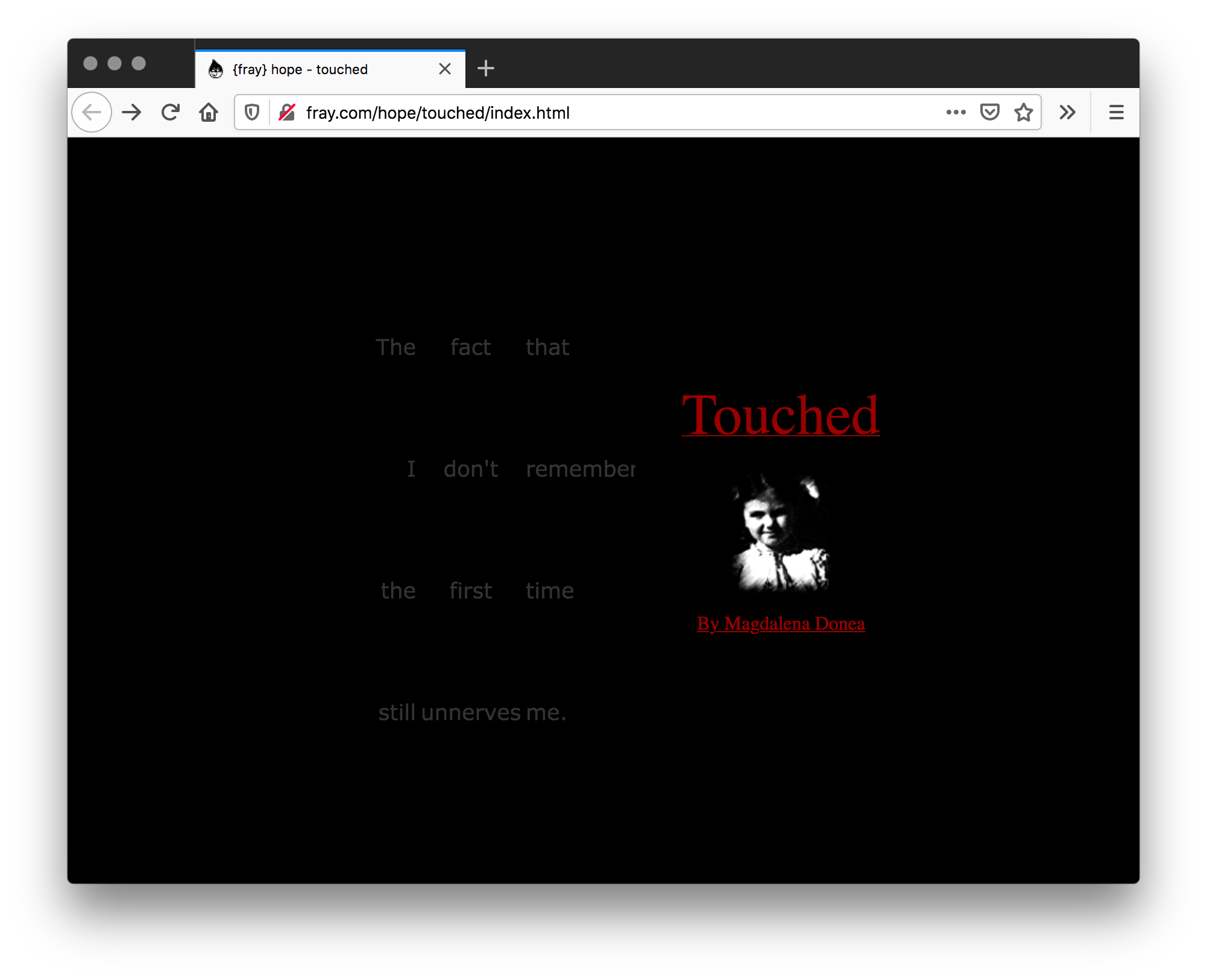
Screenshot, 2020, Firefox v76.0.1 on Mac OS 10.13.3; http://fray.com/hope/touched/index.html
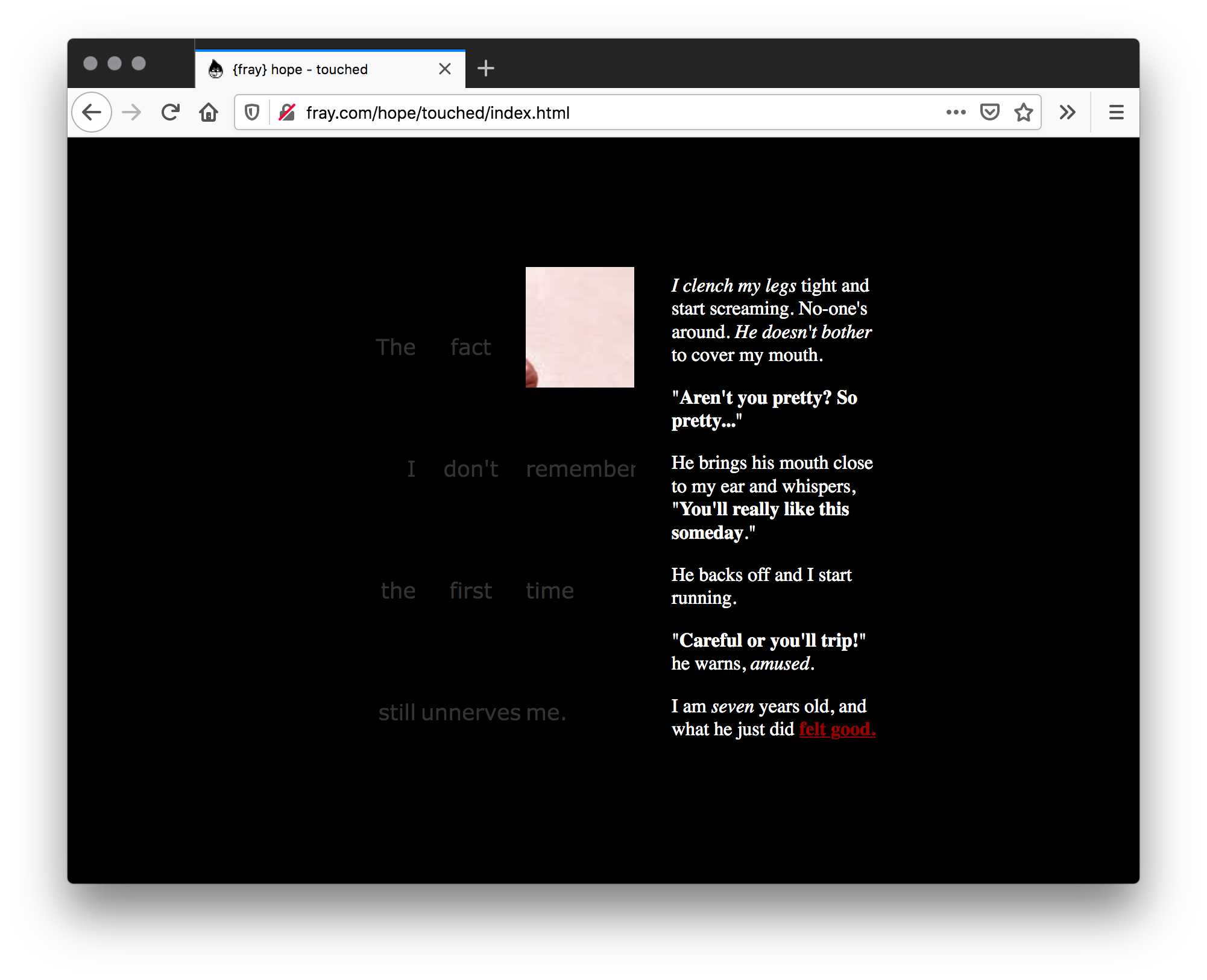
Screenshot, 2020, Firefox v76.0.1 on Mac OS 10.13.3; http://fray.com/hope/touched/index.html
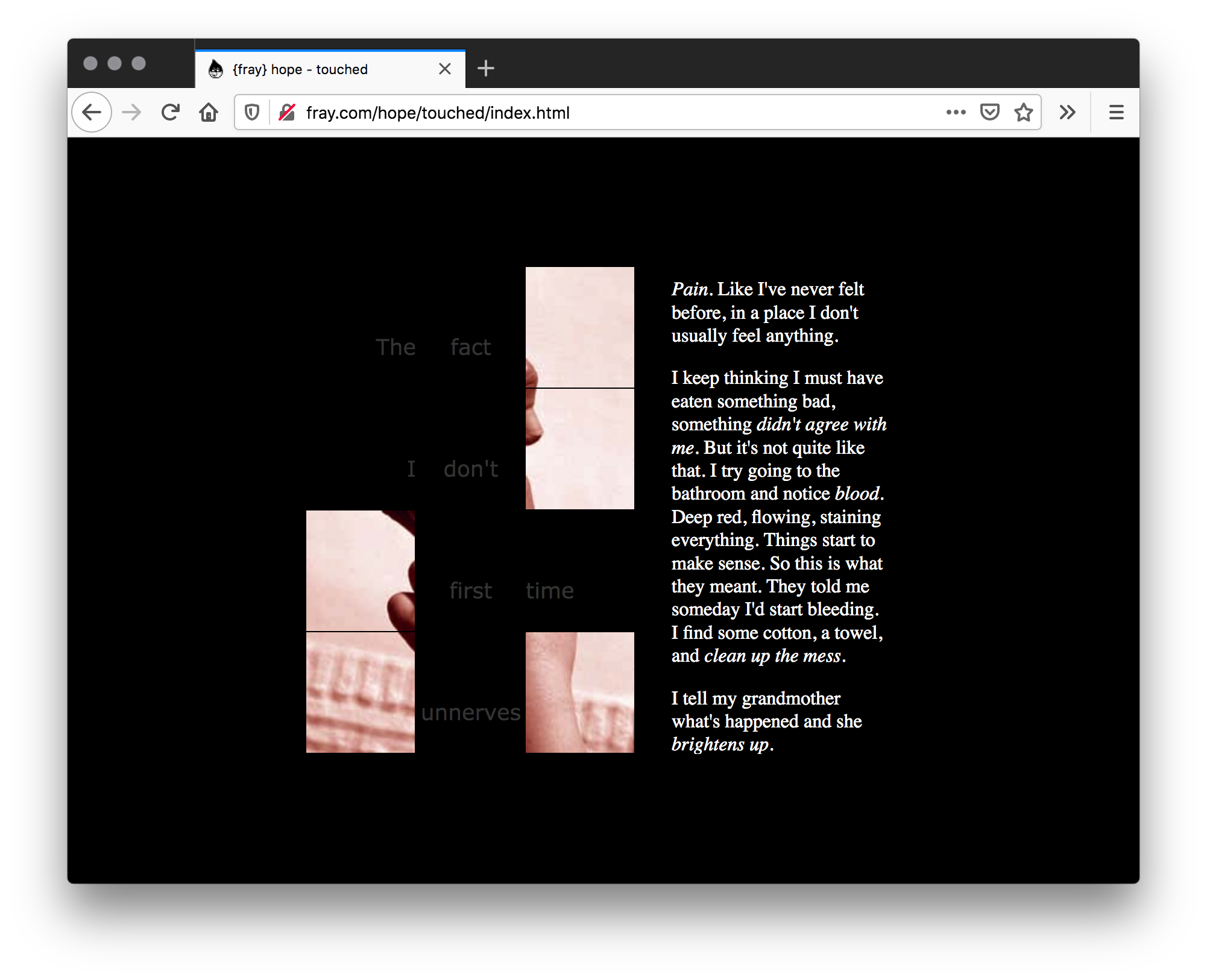
Screenshot, 2020, Firefox v76.0.1 on Mac OS 10.13.3; http://fray.com/hope/touched/index.html
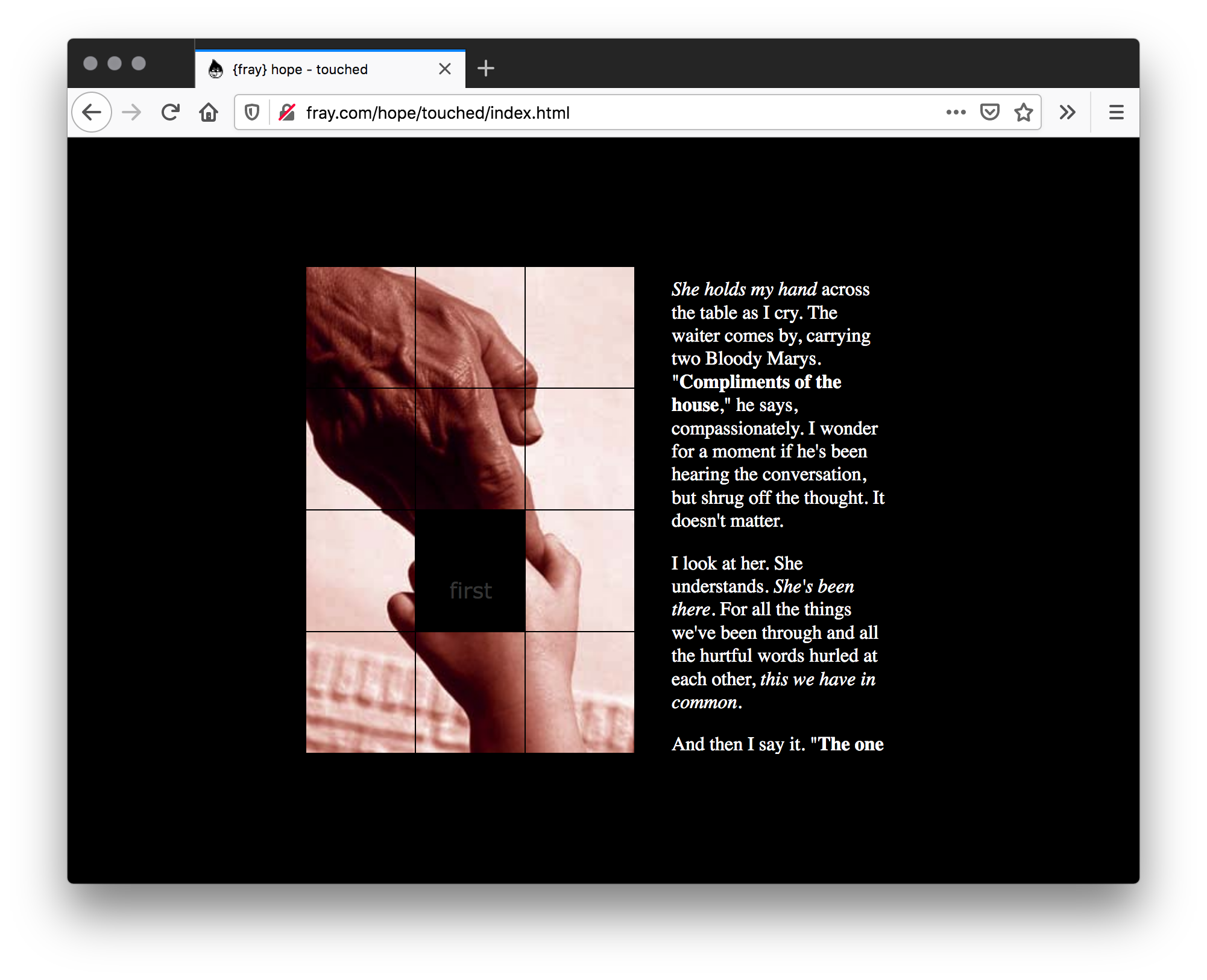
Screenshot, 2020, Firefox v76.0.1 on Mac OS 10.13.3; http://fray.com/hope/touched/index.html
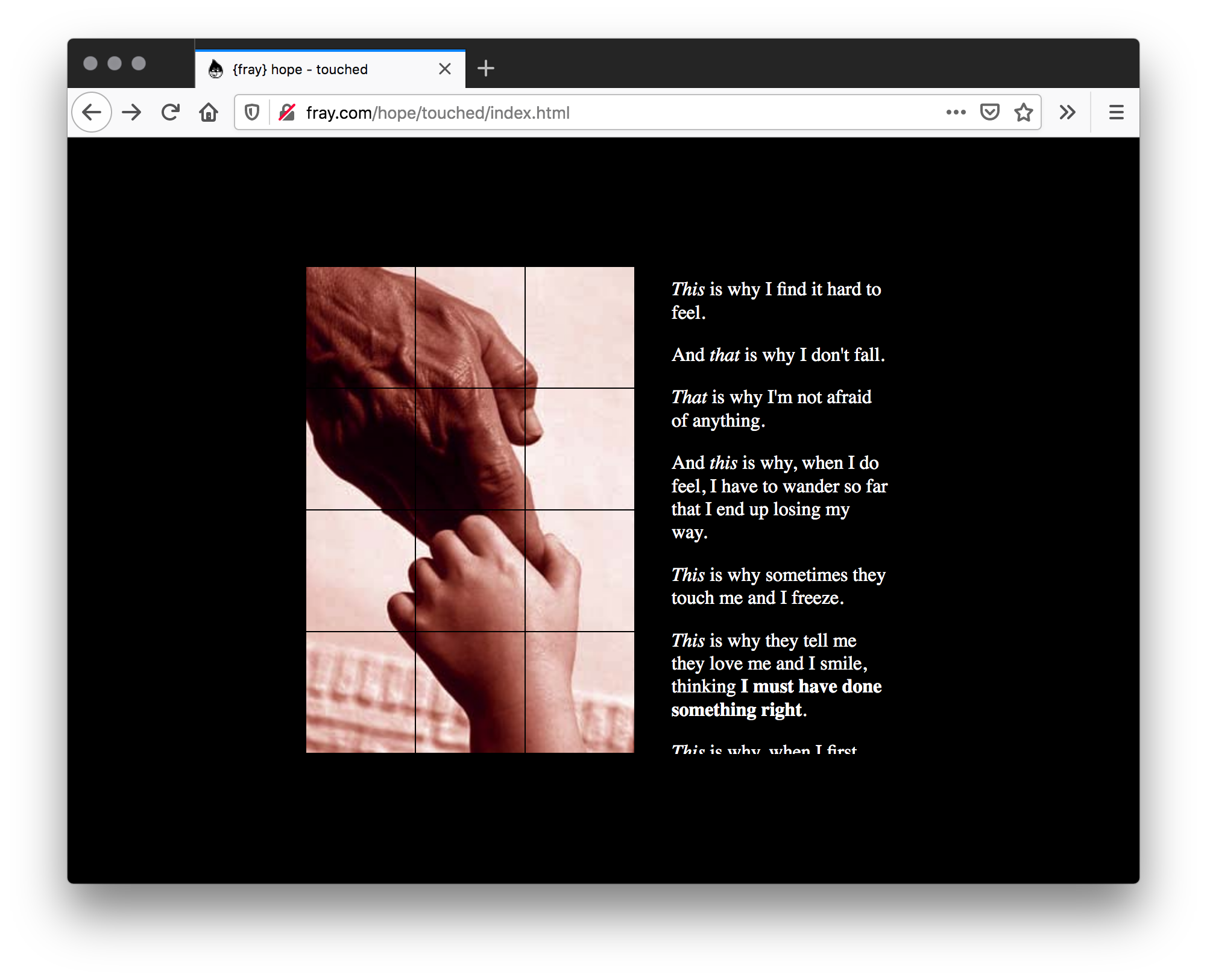
Screenshot, 2020, Firefox v76.0.1 on Mac OS 10.13.3; http://fray.com/hope/touched/index.html

artifact from Screenshot, 2020, Firefox v76.0.1 on Mac OS 10.13.3; http://fray.com/hope/touched/index.html
This is why I find it hard to feel.
And that is why I don't fall.
That is why I'm not afraid of anything.
And this is why, when I do feel, I have to wander so far that I end up losing my way.
This is why sometimes they touch me and I freeze.
This is why they tell me they love me and I smile, thinking I must have done something right.
This is why, when I first saw her, it was her hands I had to look at first.
I know, I'm supposed to have gotten over this by now....
1997, Magdalena Donea, http://fray.com/hope/touched/index.html
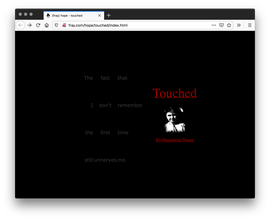
Screenshot, 2020, Firefox v76.0.1 on Mac OS 10.13.3; http://fray.com/hope/touched/index.html

Screenshot, 2020, Firefox v76.0.1 on Mac OS 10.13.3; http://fray.com/hope/touched/index.html
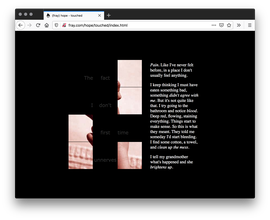
Screenshot, 2020, Firefox v76.0.1 on Mac OS 10.13.3; http://fray.com/hope/touched/index.html

Screenshot, 2020, Firefox v76.0.1 on Mac OS 10.13.3; http://fray.com/hope/touched/index.html
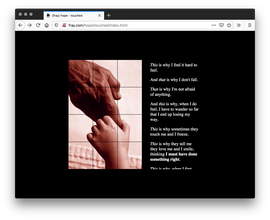
Screenshot, 2020, Firefox v76.0.1 on Mac OS 10.13.3; http://fray.com/hope/touched/index.html

artifact from Screenshot, 2020, Firefox v76.0.1 on Mac OS 10.13.3; http://fray.com/hope/touched/index.html
(118)
1997
konsent klinik
Julia Scher
wonderland products
Your void is our workspace.
wonder who? wonder you! self love discovery kit
Raise yourself right.
Advances in genetic technology
allows for this simple do it
yourself cloning kit—when one
of you isn’t enough.
Scrape, clip, cut, and plant.
You can’t love others until you love yourself.
1997, Julia Scher, http://adaweb.walkerart.org/project/secure/kk/
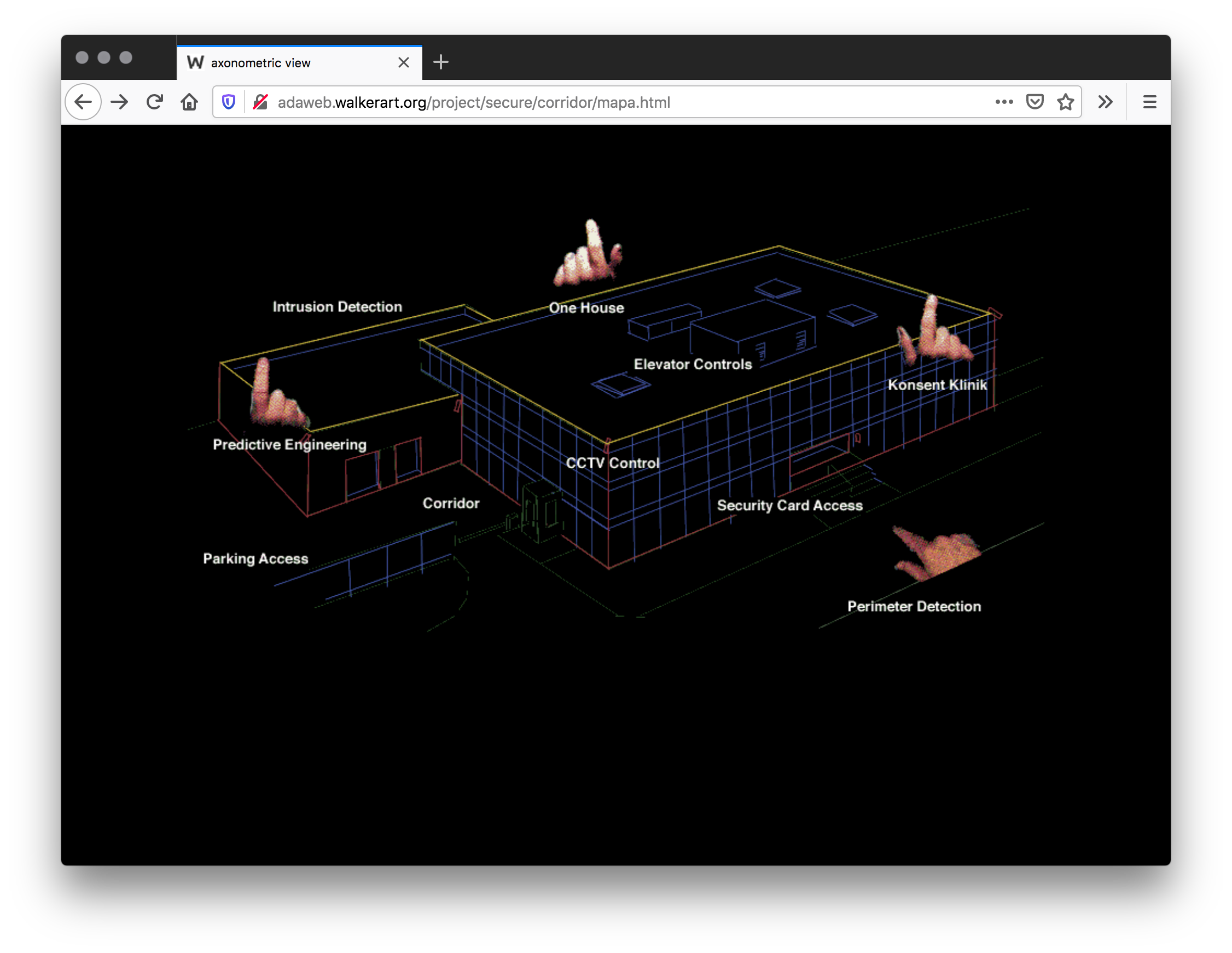
Screenshot, 2020, Firefox v76.0.1 on Mac OS 10.13.3; http://adaweb.walkerart.org/project/secure/corridor/mapa.html
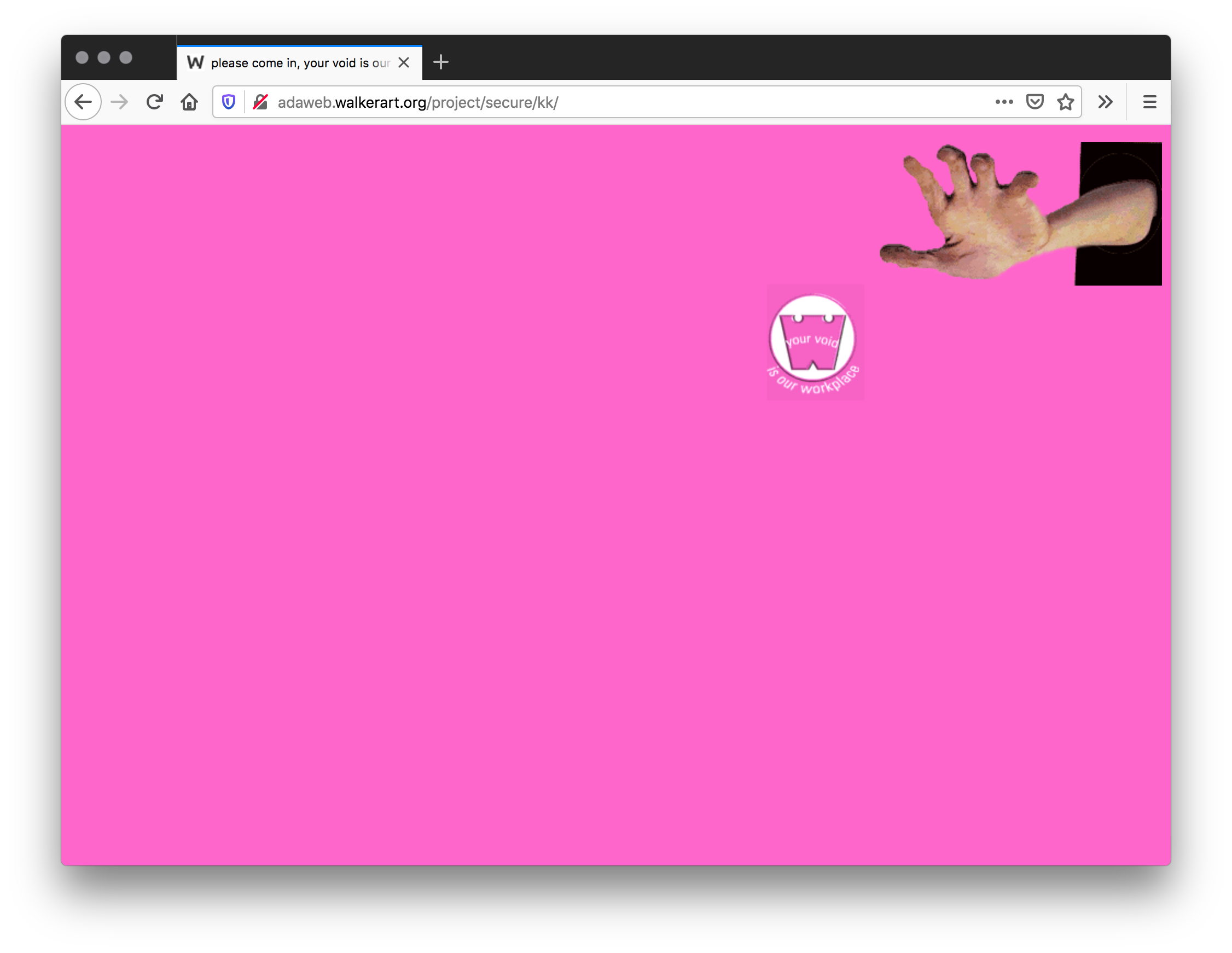
Screenshot, 2020, Firefox v76.0.1 on Mac OS 10.13.3; http://adaweb.walkerart.org/project/secure/kk/

artifact from http://adaweb.walkerart.org/project/secure/kk/

artifact from http://adaweb.walkerart.org/project/secure/kk/
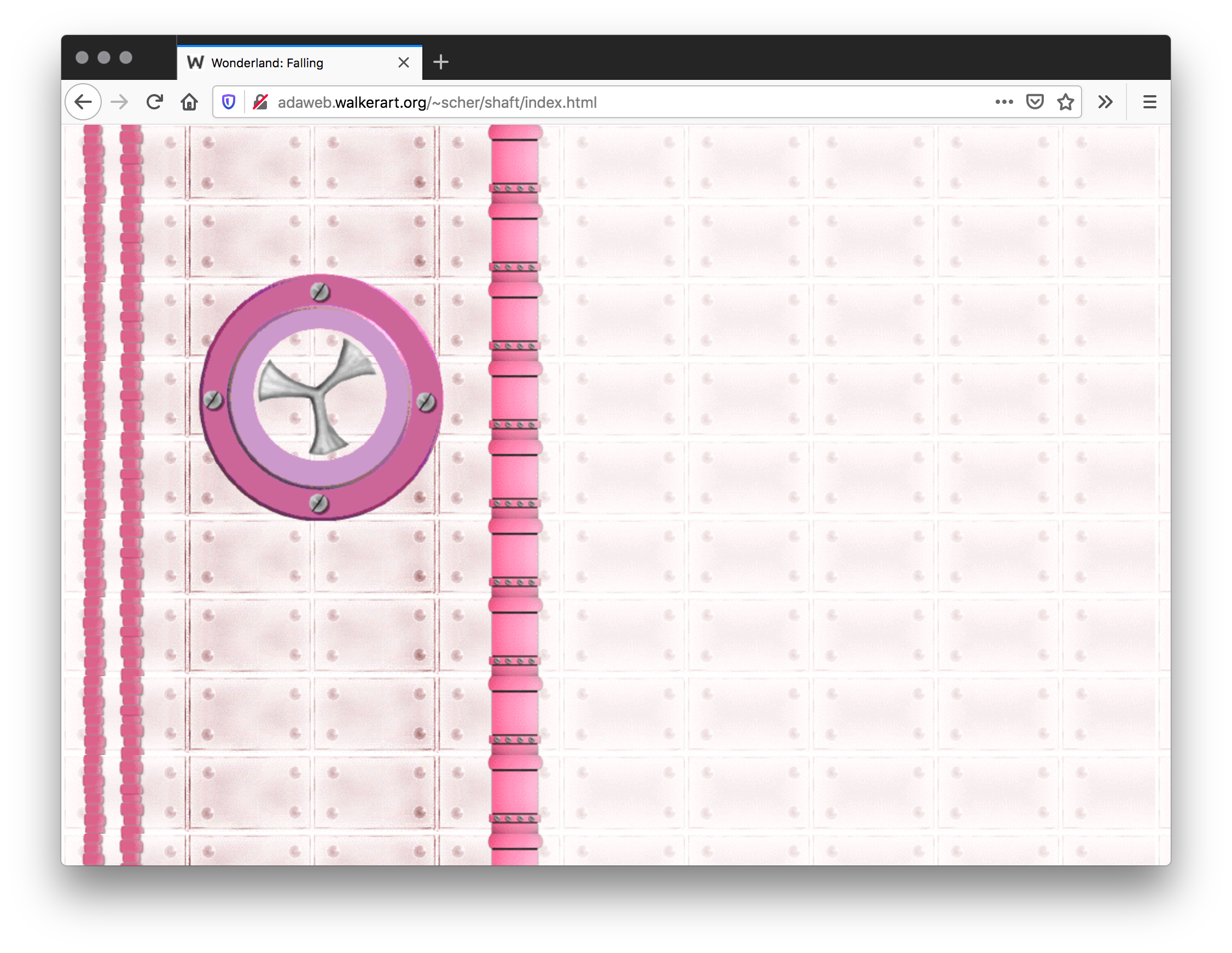
Screenshot, 2020, Firefox v76.0.1 on Mac OS 10.13.3; http://adaweb.walkerart.org/~scher/shaft/index.html

artifact from http://adaweb.walkerart.org/~scher/shaft/index.html
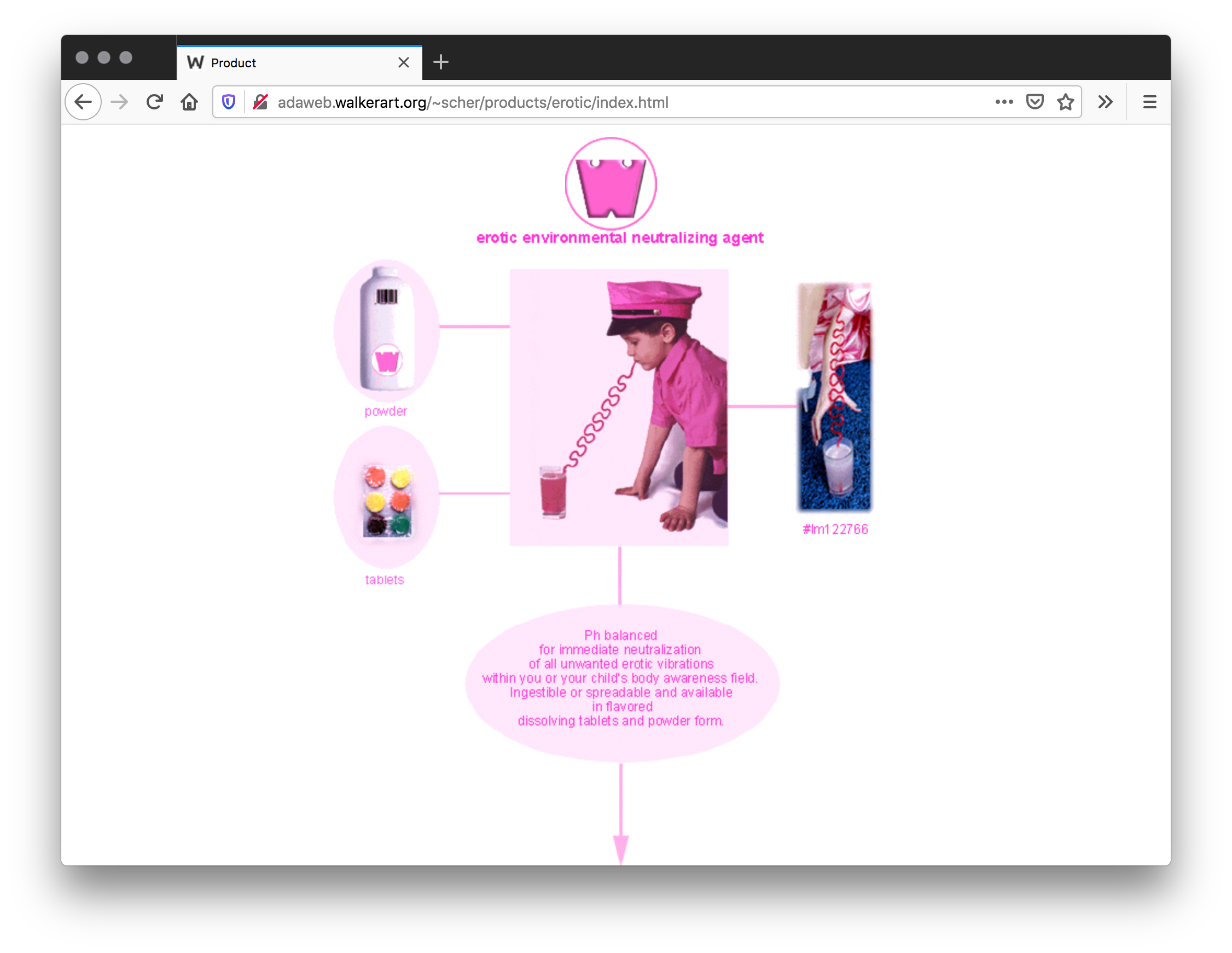
Screenshot from http://adaweb.walkerart.org/~scher/products/erotic/index.html
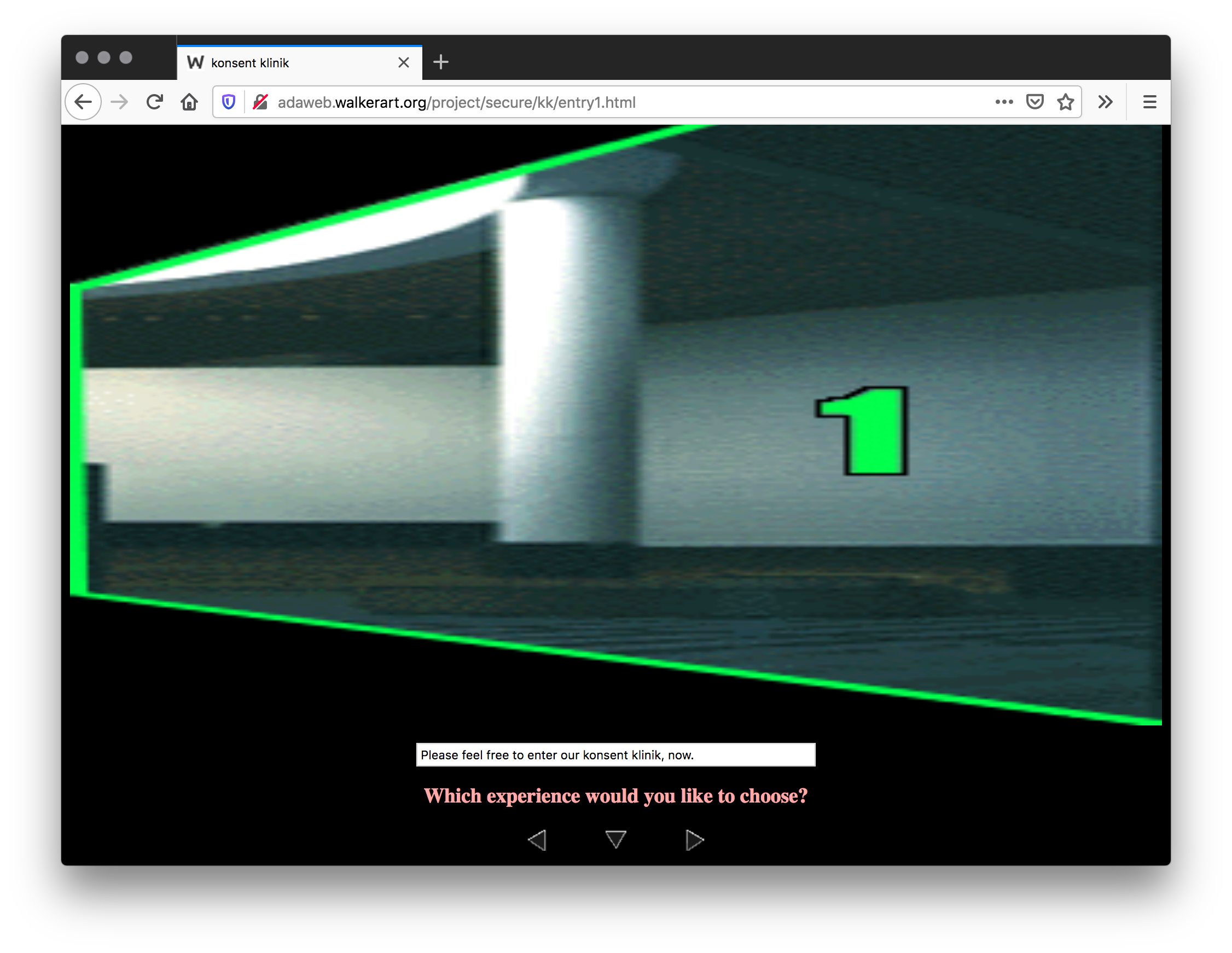
Screenshot from [http://adaweb.walkerart.org/project/secure/kk/entry1.htmlhttp://adaweb.walkerart.org/~scher/products/erotic/index.html
wonderland products
Your void is our workspace.
wonder who? wonder you! self love discovery kit
Raise yourself right.
Advances in genetic technology
allows for this simple do it
yourself cloning kit—when one
of you isn’t enough.
Scrape, clip, cut, and plant.
You can’t love others until you love yourself.
1997, Julia Scher, http://adaweb.walkerart.org/project/secure/kk/
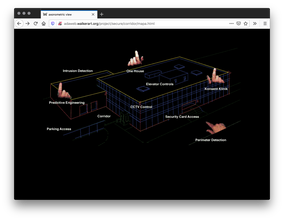
Screenshot, 2020, Firefox v76.0.1 on Mac OS 10.13.3; http://adaweb.walkerart.org/project/secure/corridor/mapa.html
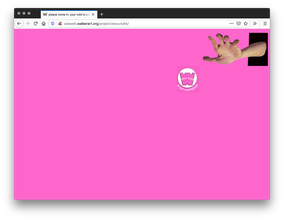
Screenshot, 2020, Firefox v76.0.1 on Mac OS 10.13.3; http://adaweb.walkerart.org/project/secure/kk/

artifact from http://adaweb.walkerart.org/project/secure/kk/

artifact from http://adaweb.walkerart.org/project/secure/kk/
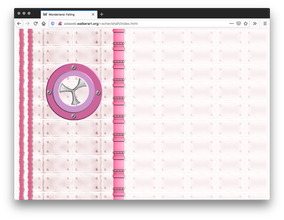
Screenshot, 2020, Firefox v76.0.1 on Mac OS 10.13.3; http://adaweb.walkerart.org/~scher/shaft/index.html

artifact from http://adaweb.walkerart.org/~scher/shaft/index.html

Screenshot from http://adaweb.walkerart.org/~scher/products/erotic/index.html
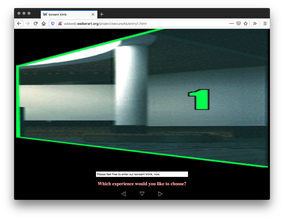
Screenshot from [http://adaweb.walkerart.org/project/secure/kk/entry1.htmlhttp://adaweb.walkerart.org/~scher/products/erotic/index.html
(119)
1997
Totem Project
Tamiko Thiel
Totem: An object, animal or plant, worshiped as the ancestor or protector of a person or a clan, and that serves as a magical helper.
The Totem Project is “Cyber Butoh,” a series of works that use technology to reclaim a sense of the human body as mysterious and powerful, a source of mythic significance.
Through the eye of the camera I seek this transformation from the human to the numinous, from the mortal body to that of its totemic protector.
[In “The Totem of Heavenly Wisdom”] I search for abstract forms and movements of the human body that trigger powerful associations with the processes of life and death, transforming images of “innocent” body parts into fetishistic objects, projections of the viewer's own desires and fears.
1997, Tamiko Thiel, http://www.mission-base.com/tamiko/totem/index.html
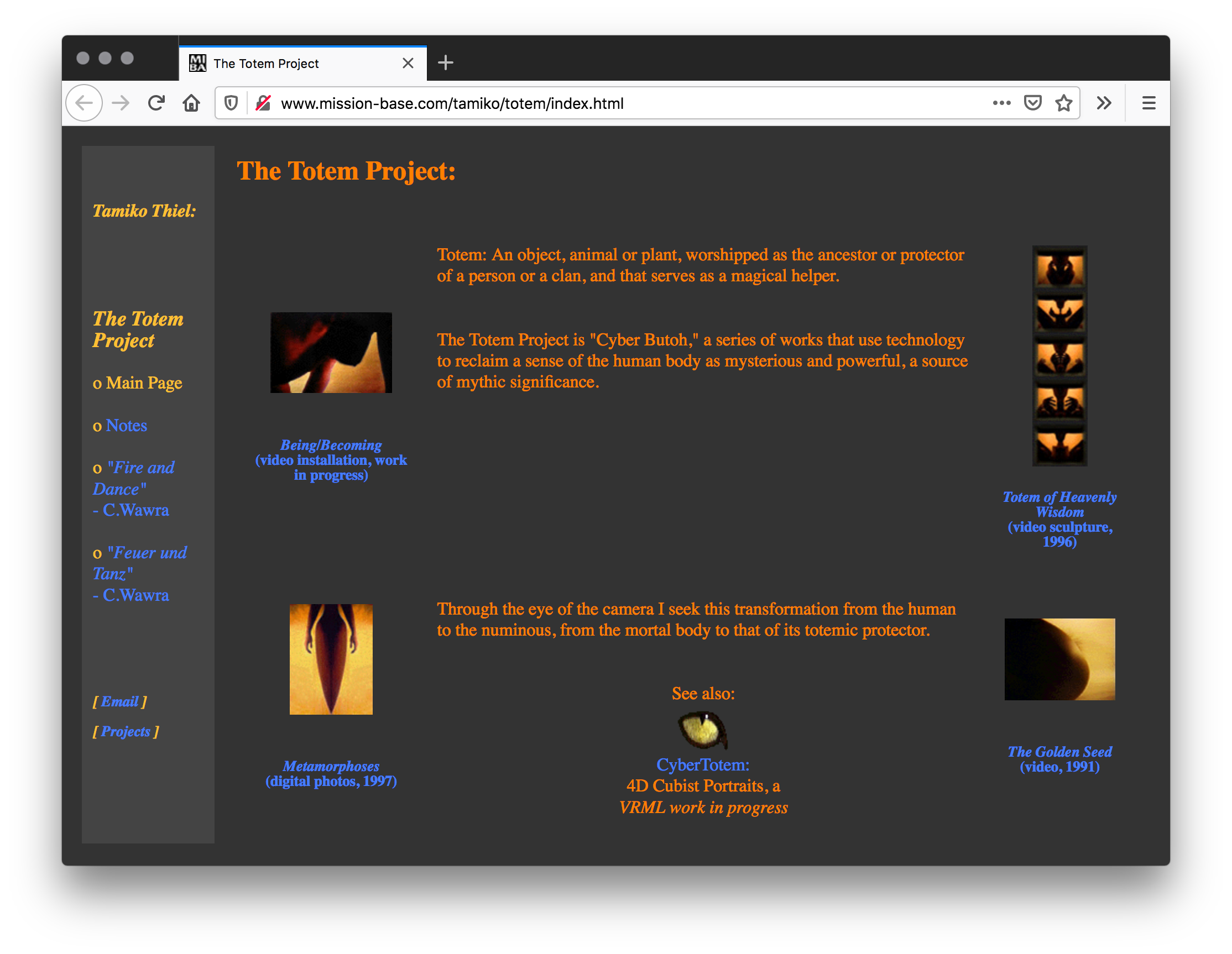
Screenshot, 2020, Firefox v76.0.1 on Mac OS 10.13.3; http://www.mission-base.com/tamiko/totem/index.html

“Totem of Heavenly Wisdom“, image from http://www.mission-base.com/tamiko/totem/tohw/index.html
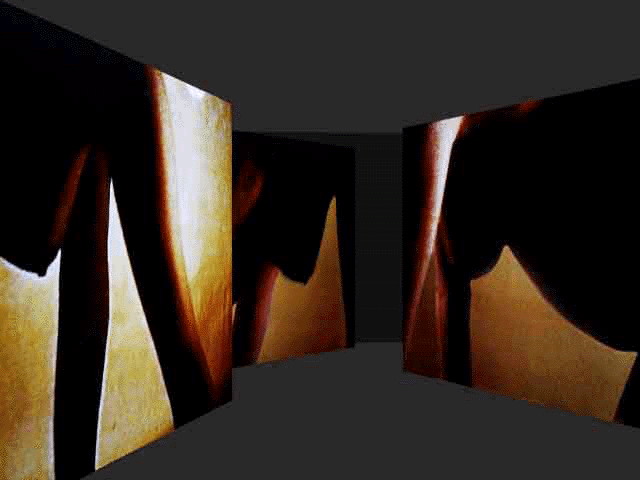
“Being/Becoming”, image from http://www.mission-base.com/tamiko/totem/being/index.html
Totem: An object, animal or plant, worshiped as the ancestor or protector of a person or a clan, and that serves as a magical helper.
The Totem Project is “Cyber Butoh,” a series of works that use technology to reclaim a sense of the human body as mysterious and powerful, a source of mythic significance.
Through the eye of the camera I seek this transformation from the human to the numinous, from the mortal body to that of its totemic protector.
[In “The Totem of Heavenly Wisdom”] I search for abstract forms and movements of the human body that trigger powerful associations with the processes of life and death, transforming images of “innocent” body parts into fetishistic objects, projections of the viewer's own desires and fears.
1997, Tamiko Thiel, http://www.mission-base.com/tamiko/totem/index.html

Screenshot, 2020, Firefox v76.0.1 on Mac OS 10.13.3; http://www.mission-base.com/tamiko/totem/index.html

“Totem of Heavenly Wisdom“, image from http://www.mission-base.com/tamiko/totem/tohw/index.html
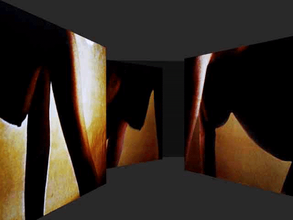
“Being/Becoming”, image from http://www.mission-base.com/tamiko/totem/being/index.html
(120)
1997
Confessions of a Webback
Guillermo Gómez-Peña, Evantheia Schibsted
Guillermo Gómez-Peña: The Ethnocyborgs are composites based on a multiplicity of fears and desires. They can be friendly, open, and as attractive as they are appalling. The CyberVato, for instance, is a pre-industrial shaman, a bohemian. He’s highly sexual and exotic. […]
Evantheia Schibsted: You call yourself a “Webback.” Do you see yourself as an intruder on the Net?
Guillermo Gómez-Peña: Yes. The number of Latino students, artists, and activists on the Net is minute. But we want to participate in the national and cultural debates, and many are permeated by technology. I consider myself a coyote, a smuggler of ideas. (x) We want Net inhabitants to get used to a new cultural sensibility. But we do encounter the linguistic border patrol.
1997, Guillermo Gómez-Peña, interview by Evantheia Schibsted, Wired, January 1, 1997, https://www.wired.com/1997/01/ffpena/
https://www.are.na/block/7977853
Guillermo Gómez-Peña: The Ethnocyborgs are composites based on a multiplicity of fears and desires. They can be friendly, open, and as attractive as they are appalling. The CyberVato, for instance, is a pre-industrial shaman, a bohemian. He’s highly sexual and exotic. […]
Evantheia Schibsted: You call yourself a “Webback.” Do you see yourself as an intruder on the Net?
Guillermo Gómez-Peña: Yes. The number of Latino students, artists, and activists on the Net is minute. But we want to participate in the national and cultural debates, and many are permeated by technology. I consider myself a coyote, a smuggler of ideas. (x) We want Net inhabitants to get used to a new cultural sensibility. But we do encounter the linguistic border patrol.
1997, Guillermo Gómez-Peña, interview by Evantheia Schibsted, Wired, January 1, 1997, https://www.wired.com/1997/01/ffpena/
https://www.are.na/block/7977853
(121)
1997
Cooking Up a Storm: Women, Activism and Cyberspace
Judy Harrison
The site gives a “cook’s tour” of some of the ways women activists are using cyberspace to promote their goals. … if you haven’t thought about cyberspace and women’s activism (x) going together before you are about to be stunned by the opportunities the medium offers … if you are interested in issues—knowing what is going on, networking, planning and taking action—cyberspace is for you … if your women’s organization is interested in visibility, exerting influence, broadening support for your goals—the use of cyberspace will be an obvious move, and … if your women’s organization aims to ensure that the membership is informed and involved, wants to attract volunteers, stages events or is interested in fundraising—cyberspace offers new tools and opportunities.
1997, Judy Harrison (paper presentation, Wotz IT All About: Women, Creativity and the (In)formation Age, Adelaide, Australia, April 17–18, 1997), https://web.archive.org/web/20011212075857/http://www.nwjc.org.au/activism.html
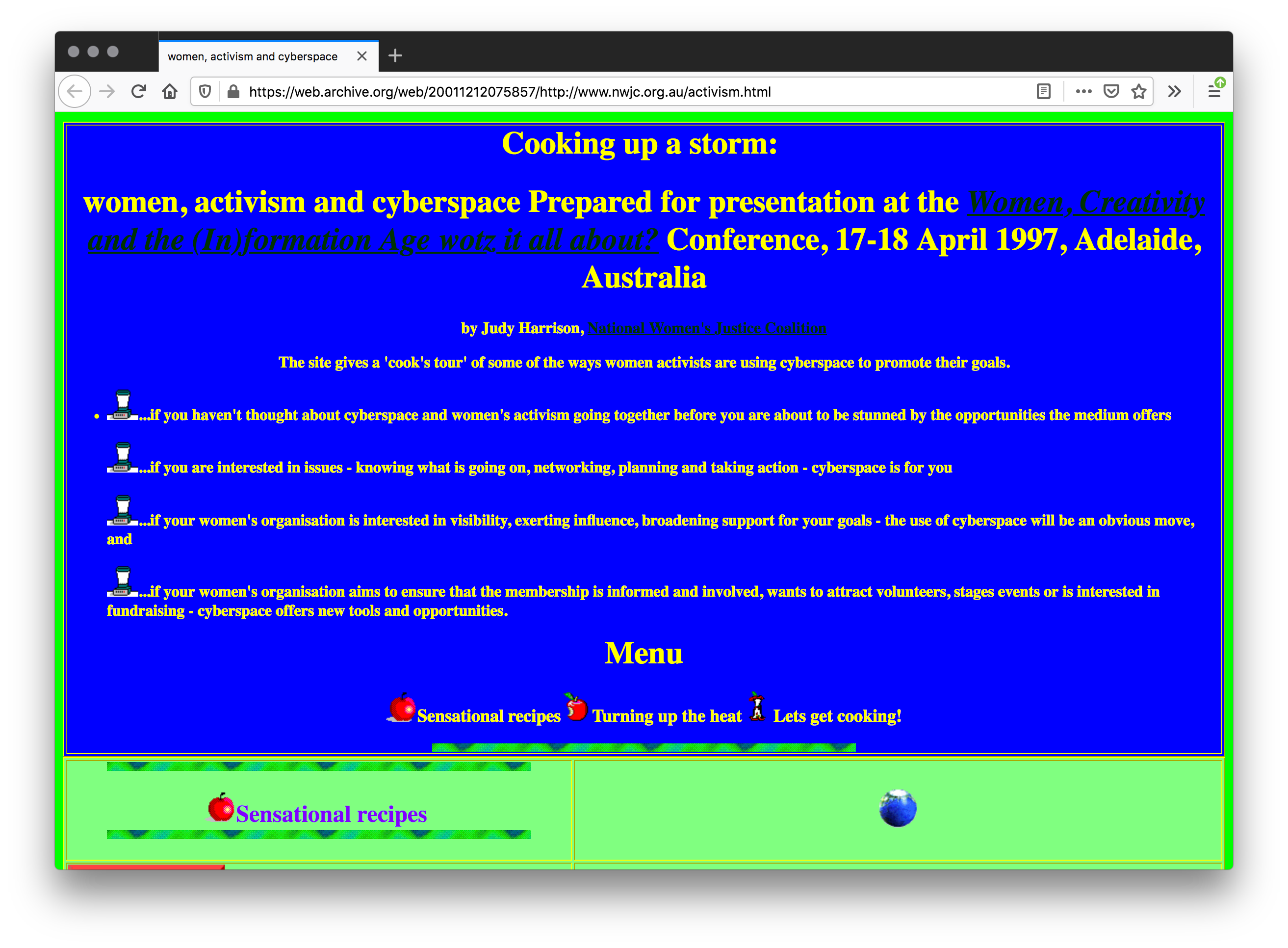
Wayback Machine, December 12, 2001, Screenshot, 2020, Firefox v76.0.1 on Mac OS 10.13.3; https://web.archive.org/web/20011212075857/http://www.nwjc.org.au/activism.html
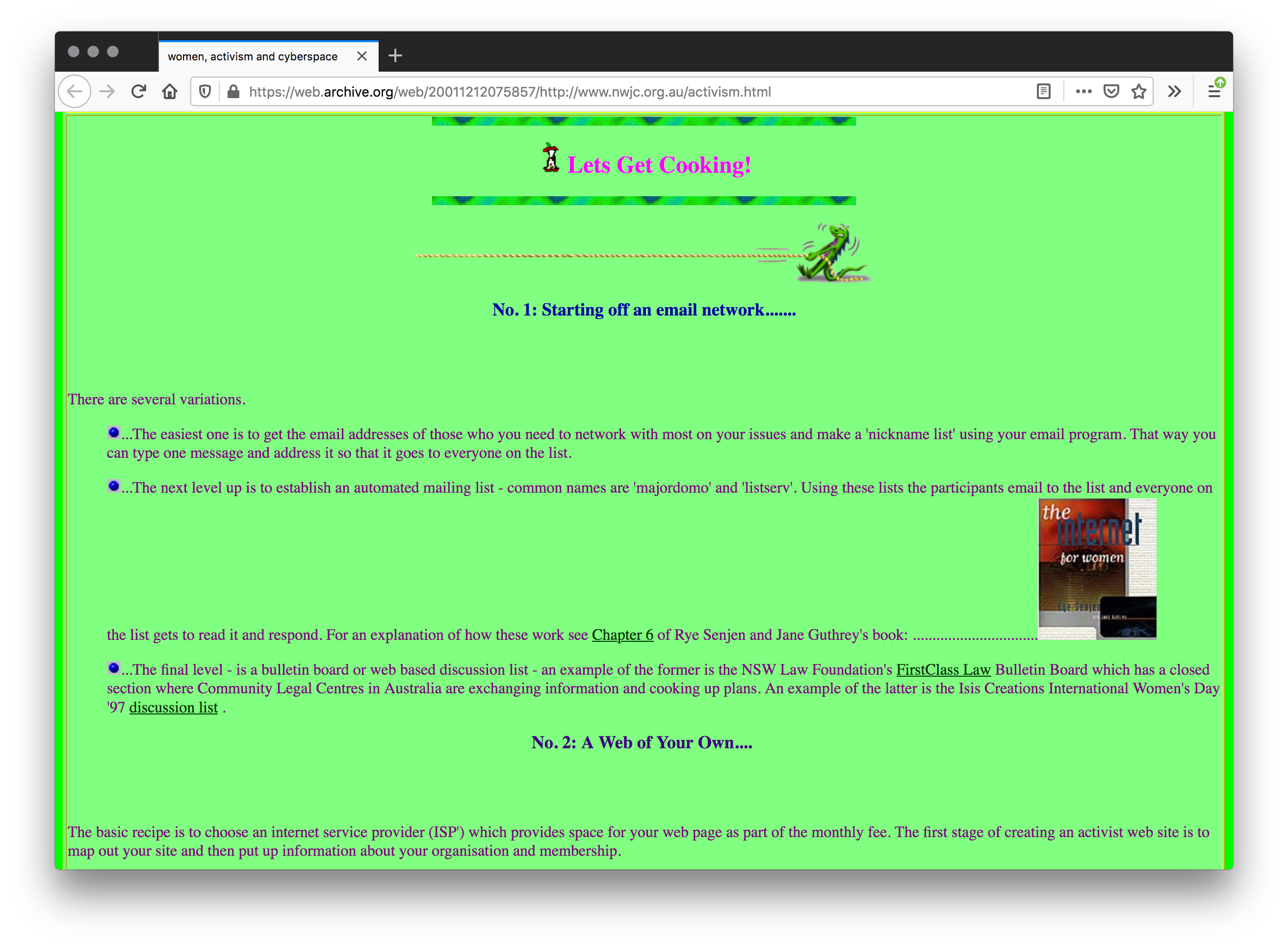
Wayback Machine, December 12, 2001, Screenshot, 2020, Firefox v76.0.1 on Mac OS 10.13.3; https://web.archive.org/web/20011212075857/http://www.nwjc.org.au/activism.html

“Canadian Women's Internet Association: Candlelight Vigil Across the Internet,” campaign logo, https://web.archive.org/web/20011212075857/http://www.nwjc.org.au/activism.html

“Formed by Australian agricultural and rural women”, artifact from https://web.archive.org/web/20011212075857/http://www.nwjc.org.au/activism.html

“The Web Ring lists subscribing web sites - the icon goes on the subscribers site and when clicked it takes you to the next site on the web ring list.”
The site gives a “cook’s tour” of some of the ways women activists are using cyberspace to promote their goals. … if you haven’t thought about cyberspace and women’s activism (x) going together before you are about to be stunned by the opportunities the medium offers … if you are interested in issues—knowing what is going on, networking, planning and taking action—cyberspace is for you … if your women’s organization is interested in visibility, exerting influence, broadening support for your goals—the use of cyberspace will be an obvious move, and … if your women’s organization aims to ensure that the membership is informed and involved, wants to attract volunteers, stages events or is interested in fundraising—cyberspace offers new tools and opportunities.
1997, Judy Harrison (paper presentation, Wotz IT All About: Women, Creativity and the (In)formation Age, Adelaide, Australia, April 17–18, 1997), https://web.archive.org/web/20011212075857/http://www.nwjc.org.au/activism.html
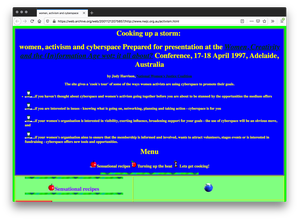
Wayback Machine, December 12, 2001, Screenshot, 2020, Firefox v76.0.1 on Mac OS 10.13.3; https://web.archive.org/web/20011212075857/http://www.nwjc.org.au/activism.html
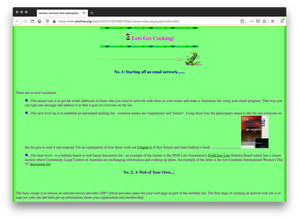
Wayback Machine, December 12, 2001, Screenshot, 2020, Firefox v76.0.1 on Mac OS 10.13.3; https://web.archive.org/web/20011212075857/http://www.nwjc.org.au/activism.html

“Canadian Women's Internet Association: Candlelight Vigil Across the Internet,” campaign logo, https://web.archive.org/web/20011212075857/http://www.nwjc.org.au/activism.html

“Formed by Australian agricultural and rural women”, artifact from https://web.archive.org/web/20011212075857/http://www.nwjc.org.au/activism.html

“The Web Ring lists subscribing web sites - the icon goes on the subscribers site and when clicked it takes you to the next site on the web ring list.”
(122)
1997
Steps to the Moon
Gita Hashemi
Steps to the Moon documents the efforts by two Iranian women, one in isolation in Iran and the other in exile in Canada, to rebuild their friendship using the internet—which at the time was only recently accessible through universities—as a space and vehicle for communication. Parallel to this, the sitemaker, also an Iranian woman, turns her gaze inward to document her own memories as they surface through working on the project. Combining the personal, the political and the poetic, Steps to the Moon is about two women, three collaborators and four presences in a hyperspace.
Steps to the Moon raised important questions about the politics of cyber technology as the barriers of language (predominantly English at the time), access (quite limited at the time even in the “first world”), and surveillance (endemic across the global networks) manifested themselves in the process. Primarily intended as a project to facilitate personal healing through the work of reconstructing and speaking of a difficult shared history, Steps to the Moon also highlighted the tensions between the private and the public, the personal and the political because of the oppressive/repressive conditions that inform the shaping of these dichotomies in Iran and in the West.
1997, Gita Hashemi, http://steps.gitaha.net
http://html.gitaha.net/art.html#steps
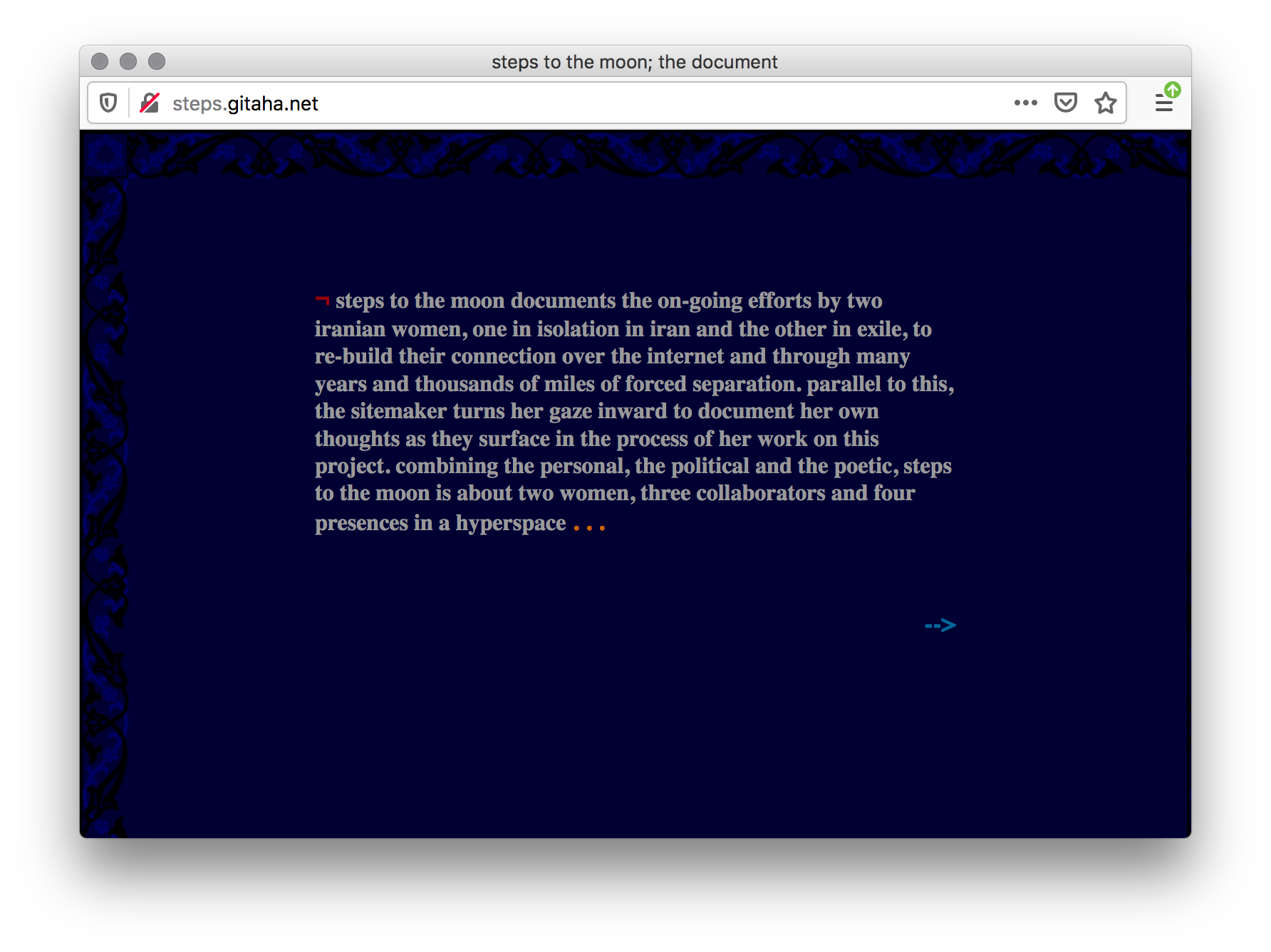
Screenshot, 2020, Firefox v76.0.1 on Mac OS 10.13.3; http://steps.gitaha.net
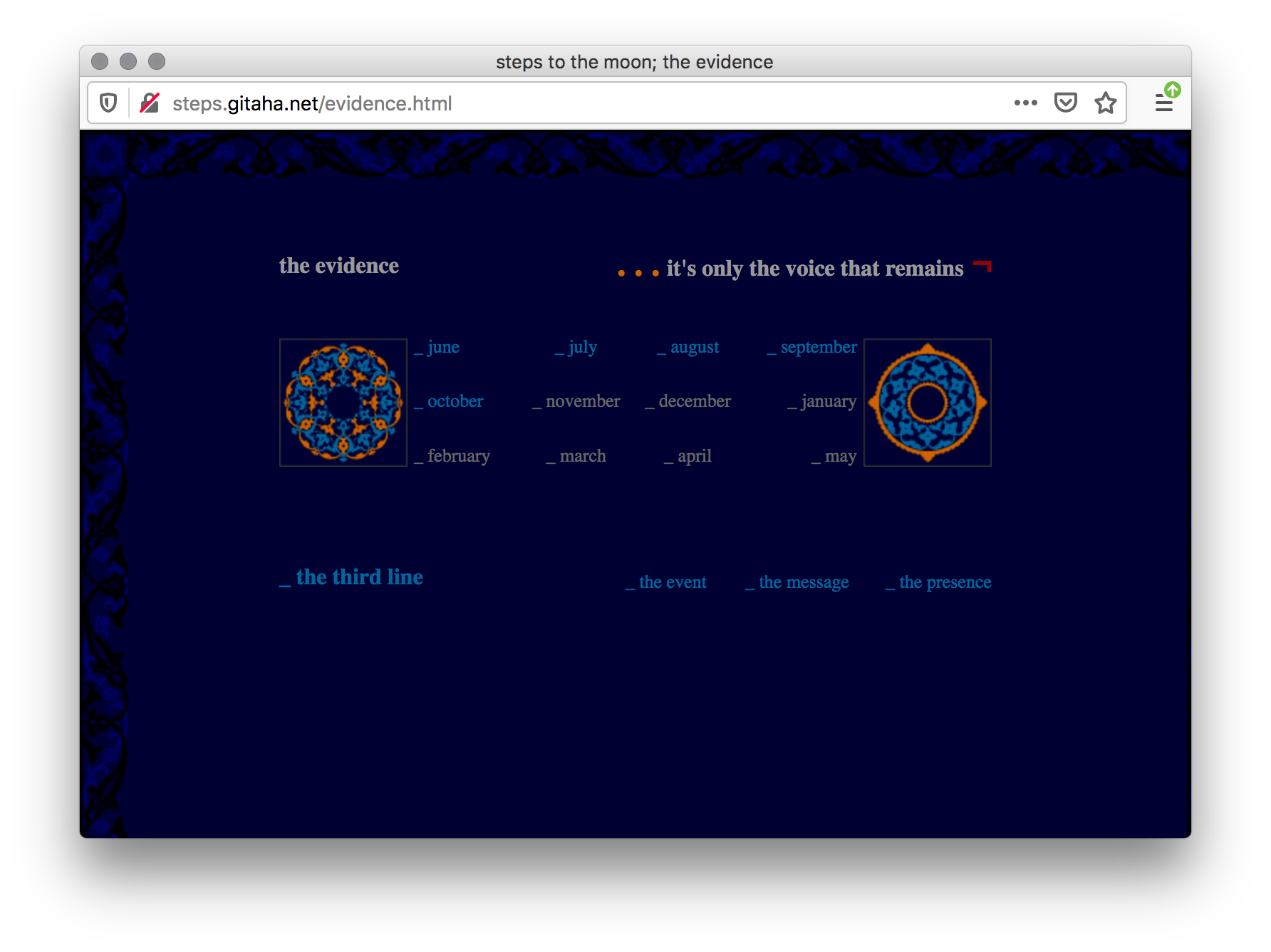
Screenshot, 2020, Firefox v76.0.1 on Mac OS 10.13.3; http://steps.gitaha.net/evidence.html
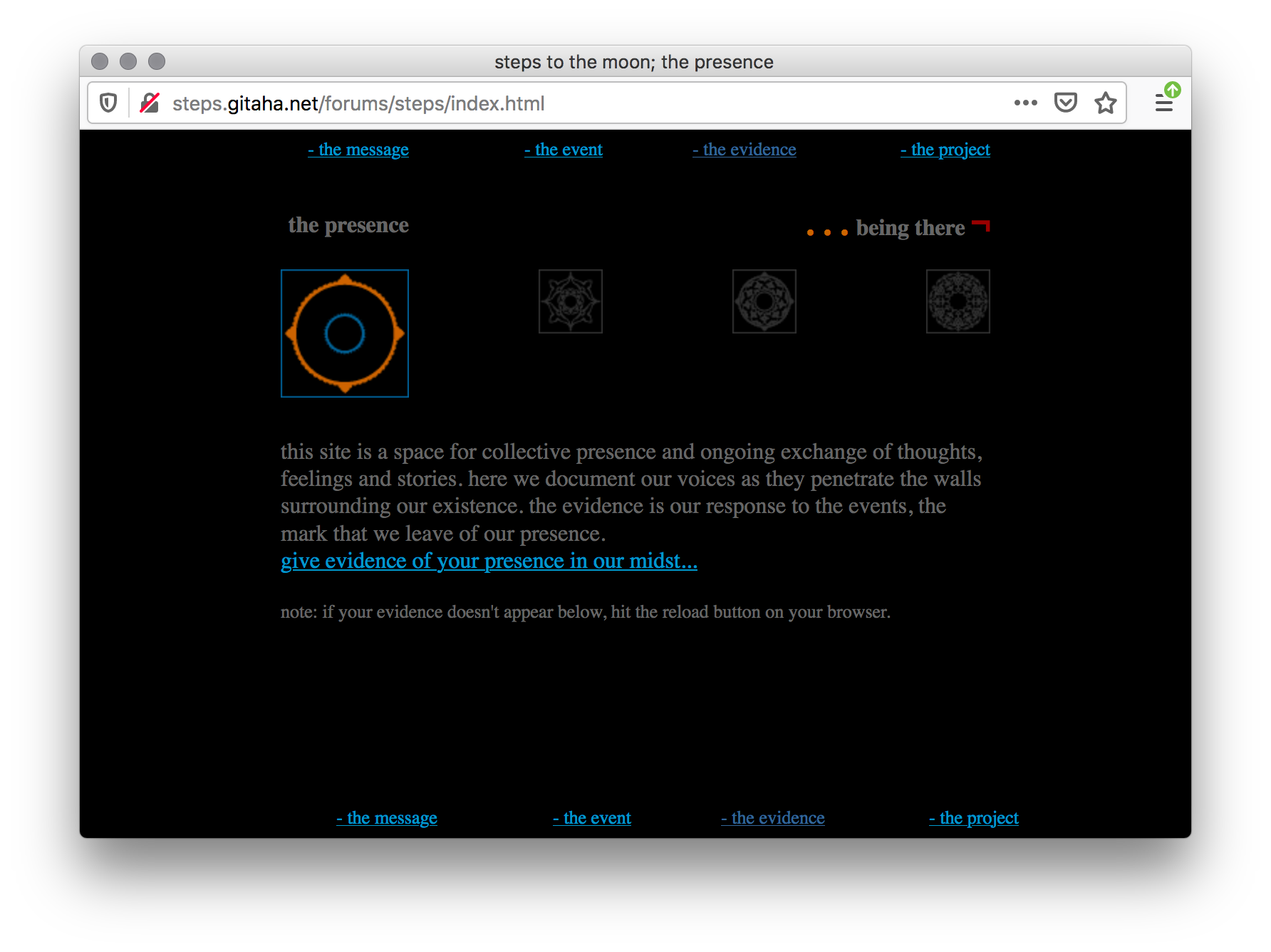
Screenshot, 2020, Firefox v76.0.1 on Mac OS 10.13.3; http://steps.gitaha.net/forums/steps/index.html

image from http://html.gitaha.net/art.html#steps
Steps to the Moon documents the efforts by two Iranian women, one in isolation in Iran and the other in exile in Canada, to rebuild their friendship using the internet—which at the time was only recently accessible through universities—as a space and vehicle for communication. Parallel to this, the sitemaker, also an Iranian woman, turns her gaze inward to document her own memories as they surface through working on the project. Combining the personal, the political and the poetic, Steps to the Moon is about two women, three collaborators and four presences in a hyperspace.
Steps to the Moon raised important questions about the politics of cyber technology as the barriers of language (predominantly English at the time), access (quite limited at the time even in the “first world”), and surveillance (endemic across the global networks) manifested themselves in the process. Primarily intended as a project to facilitate personal healing through the work of reconstructing and speaking of a difficult shared history, Steps to the Moon also highlighted the tensions between the private and the public, the personal and the political because of the oppressive/repressive conditions that inform the shaping of these dichotomies in Iran and in the West.
1997, Gita Hashemi, http://steps.gitaha.net
http://html.gitaha.net/art.html#steps
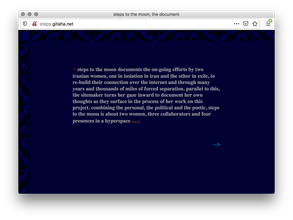
Screenshot, 2020, Firefox v76.0.1 on Mac OS 10.13.3; http://steps.gitaha.net

Screenshot, 2020, Firefox v76.0.1 on Mac OS 10.13.3; http://steps.gitaha.net/evidence.html
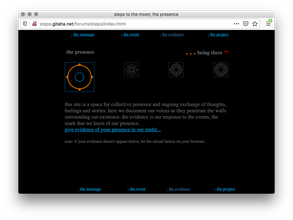
Screenshot, 2020, Firefox v76.0.1 on Mac OS 10.13.3; http://steps.gitaha.net/forums/steps/index.html

image from http://html.gitaha.net/art.html#steps
(123)
1997
Yeohae Picture [여해그림]
여해그림은 ‘딸들’의 목소리를 세상에 전하고 싶어하는
젊은 페미니스트 모임입니다.
우리는 ‘여해그림’이라는 이름에
공식적인 하나의 의미를 붙이고 싶지 않습니다.
그 네 글자가 담을 수 있는 만큼의 풍부한 의미와 이미지를
‘열린’ 상태로 가져가고 싶은 겁니다.
‘여해’ - 여성해방, 바다, 해,
그로부터 파생될 수 있는 수많은 느낌들.
‘그림’이라는 단어 역시
그려간다(만들어간다), 그리워한다(소망한다) 등을
연상시킬 수 있는 다의성과 모호성으로 인해 선택되었습니다.
YeohaeGrim is a young feminist group that wants to convey the voices of ‘daughters’ to the world. We don’t want to give an official meaning to the name “Yeohae Picture.” You want to bring the rich meaning and image of the four letters into an ‘open’ state. “Yeohae”-Feminine liberation, the sea, the sun, and numerous feelings that can be derived from it. The word “picture” was also chosen because of its versatility and ambiguity, which can be reminiscent of drawing (making) or missing (hope).
1997, YeohaeGrim, http://dalara.jinbo.net/home/main.html
South Korea
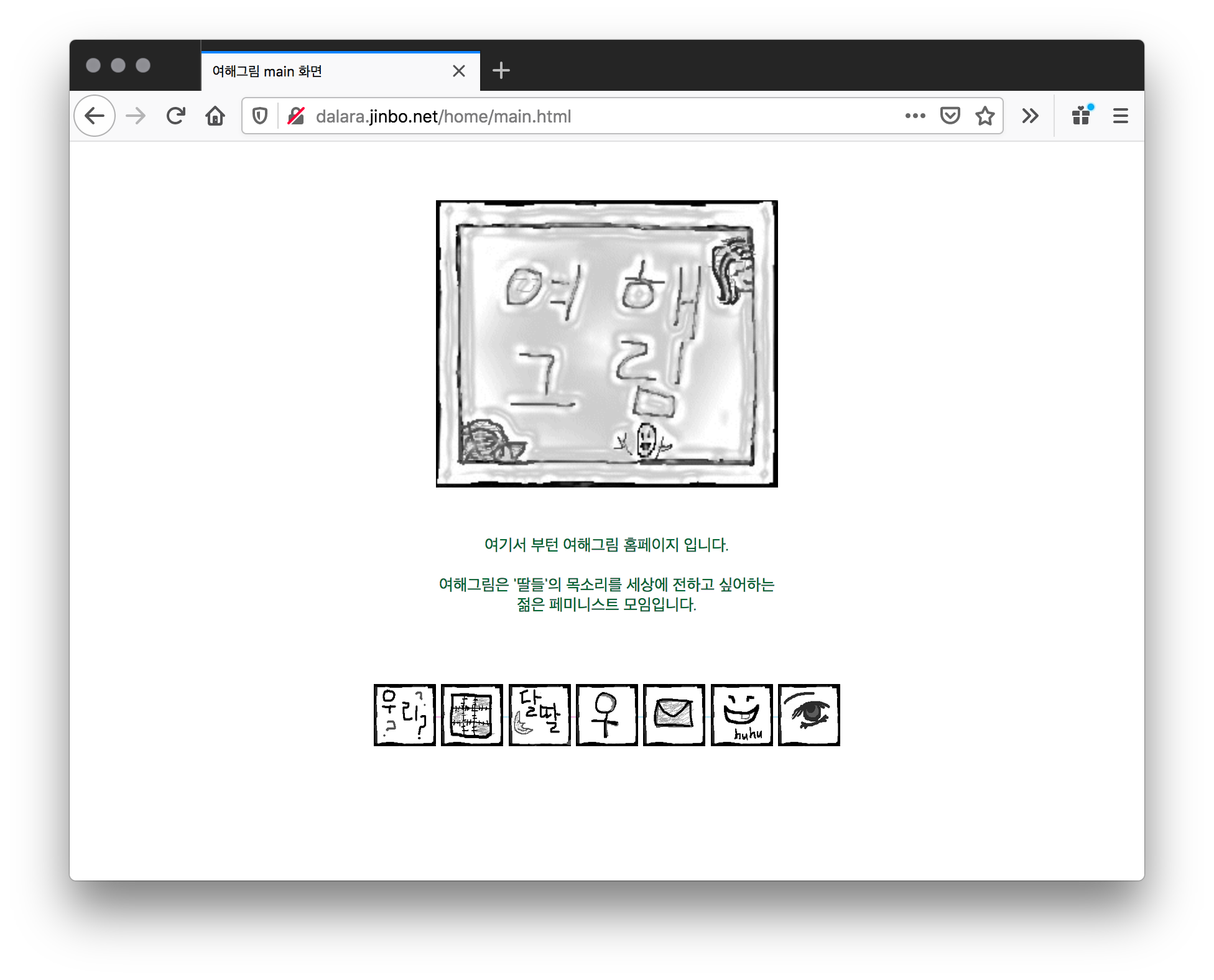
Screenshot, 2020, Firefox v76.0.1 on Mac OS 10.13.3; http://dalara.jinbo.net/home/main.html
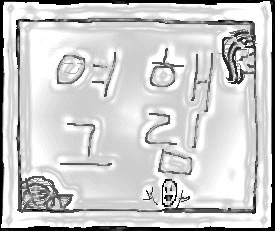
artifact from http://dalara.jinbo.net/home/main.html

artifact from http://dalara.jinbo.net/home/main.html
여해그림은 ‘딸들’의 목소리를 세상에 전하고 싶어하는
젊은 페미니스트 모임입니다.
우리는 ‘여해그림’이라는 이름에
공식적인 하나의 의미를 붙이고 싶지 않습니다.
그 네 글자가 담을 수 있는 만큼의 풍부한 의미와 이미지를
‘열린’ 상태로 가져가고 싶은 겁니다.
‘여해’ - 여성해방, 바다, 해,
그로부터 파생될 수 있는 수많은 느낌들.
‘그림’이라는 단어 역시
그려간다(만들어간다), 그리워한다(소망한다) 등을
연상시킬 수 있는 다의성과 모호성으로 인해 선택되었습니다.
YeohaeGrim is a young feminist group that wants to convey the voices of ‘daughters’ to the world. We don’t want to give an official meaning to the name “Yeohae Picture.” You want to bring the rich meaning and image of the four letters into an ‘open’ state. “Yeohae”-Feminine liberation, the sea, the sun, and numerous feelings that can be derived from it. The word “picture” was also chosen because of its versatility and ambiguity, which can be reminiscent of drawing (making) or missing (hope).
1997, YeohaeGrim, http://dalara.jinbo.net/home/main.html
South Korea
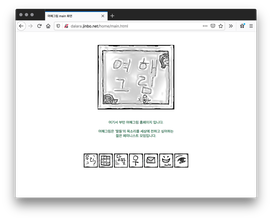
Screenshot, 2020, Firefox v76.0.1 on Mac OS 10.13.3; http://dalara.jinbo.net/home/main.html
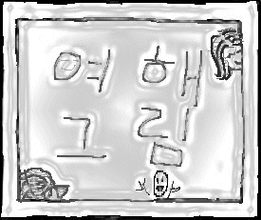
artifact from http://dalara.jinbo.net/home/main.html

artifact from http://dalara.jinbo.net/home/main.html
(124)
1997
Female Extension
Cornelia Sollfrank
In February 1997, the Hamburger Kunsthalle announced Extension, a competition for net art that was described as a virtual extension of the museum. [page "Branden" not found] Artists were invited to submit their work by uploading not more than five megabytes of data to a server for review by an esteemed jury. In response, Cornelia Sollfrank created three hundred fake female artists, and remixed existing websites to create “data trash,” which she submitted as their artwork, revealing her gesture at the museum’s press conference, where the awardees were to be announced. (As it turned out, the top three awards were all given to men.)
1997, Cornelia Sollfrank, https://artwarez.org/femext/; excerpt from Rhizome, “Female Extension,” Net Art Anthology, https://anthology.rhizome.org/female-extension
https://sites.rhizome.org/anthology/female-extension.html http://artwarez.org/femext/

“Advertisement for the Extension competition, 1997. A4 photograph.,” Image from https://anthology.rhizome.org/female-extension

artifact from http://artwarez.org/femext/
In February 1997, the Hamburger Kunsthalle announced Extension, a competition for net art that was described as a virtual extension of the museum. [page "Branden" not found] Artists were invited to submit their work by uploading not more than five megabytes of data to a server for review by an esteemed jury. In response, Cornelia Sollfrank created three hundred fake female artists, and remixed existing websites to create “data trash,” which she submitted as their artwork, revealing her gesture at the museum’s press conference, where the awardees were to be announced. (As it turned out, the top three awards were all given to men.)
1997, Cornelia Sollfrank, https://artwarez.org/femext/; excerpt from Rhizome, “Female Extension,” Net Art Anthology, https://anthology.rhizome.org/female-extension
https://sites.rhizome.org/anthology/female-extension.html http://artwarez.org/femext/

“Advertisement for the Extension competition, 1997. A4 photograph.,” Image from https://anthology.rhizome.org/female-extension

artifact from http://artwarez.org/femext/
(125)
1997–
2004
CyberPowWow
Aboriginal Territories in Cyberspace (AbTeC)
CyberPowWow is an experiment that began when we realized what an awesome tool the World Wide Web is for people who want to share ideas, images and imaginings.
The first CyberPowWow was the launch of a Web page dedicated to issues of contemporary Native art. This launch, which happened on Saturday, April 5, 1997, took place in cyberspace as well as two actual physical spaces […] On that day, people were invited to check out the new Web site, which featured new work by artists Melanie Printup Hope, (x) Bradlee LaRocque and Ryan Rice and by writers Audra Simpson, Paul Chaat Smith and Skawennati Tricia Fragnito. (x) […]
During the on-line chat, CPW participants realized that they liked hanging out in a Palace with other artists, writers and thinkers and decided that it would be worthwhile to create a Palace of our own. The CyberPowWow Palace will house a virtual gallery, library, and performance space and function as a place to meet in Cyberspace to chat about the main issues on our minds
1997, Nation to Nation, organizers (gathering, Galerie OBORO, Montreal, QC; Circle Vision Arts Corporation, Saskatoon, SK, April 5, 1997); excerpt from “CyberPowWow,” http://www.cyberpowwow.net/

Screenshot, 2020, Firefox v76.0.1 on Mac OS 10.13.3; http://www.cyberpowwow.net/index.html

artifact from http://www.cyberpowwow.net/

artifact from http://www.cyberpowwow.net/about.html

1997; Screenshot, 2020, Firefox v76.0.1 on Mac OS 10.13.3; http://www.cyberpowwow.net/cpw.html
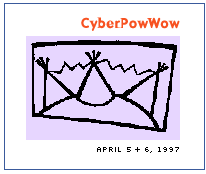
artifact from http://www.cyberpowwow.net/cpw.html
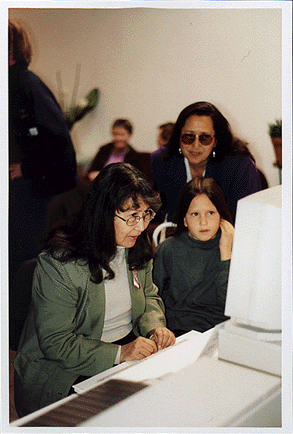
“Three generations visit CyberPowWow at Oboro”, image from http://www.cyberpowwow.net/cpw.html

artifact from http://www.cyberpowwow.net/events.html
CyberPowWow is an experiment that began when we realized what an awesome tool the World Wide Web is for people who want to share ideas, images and imaginings.
The first CyberPowWow was the launch of a Web page dedicated to issues of contemporary Native art. This launch, which happened on Saturday, April 5, 1997, took place in cyberspace as well as two actual physical spaces […] On that day, people were invited to check out the new Web site, which featured new work by artists Melanie Printup Hope, (x) Bradlee LaRocque and Ryan Rice and by writers Audra Simpson, Paul Chaat Smith and Skawennati Tricia Fragnito. (x) […]
During the on-line chat, CPW participants realized that they liked hanging out in a Palace with other artists, writers and thinkers and decided that it would be worthwhile to create a Palace of our own. The CyberPowWow Palace will house a virtual gallery, library, and performance space and function as a place to meet in Cyberspace to chat about the main issues on our minds
1997, Nation to Nation, organizers (gathering, Galerie OBORO, Montreal, QC; Circle Vision Arts Corporation, Saskatoon, SK, April 5, 1997); excerpt from “CyberPowWow,” http://www.cyberpowwow.net/

Screenshot, 2020, Firefox v76.0.1 on Mac OS 10.13.3; http://www.cyberpowwow.net/index.html

artifact from http://www.cyberpowwow.net/

artifact from http://www.cyberpowwow.net/about.html
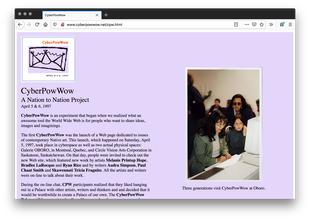
1997; Screenshot, 2020, Firefox v76.0.1 on Mac OS 10.13.3; http://www.cyberpowwow.net/cpw.html
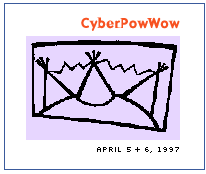
artifact from http://www.cyberpowwow.net/cpw.html
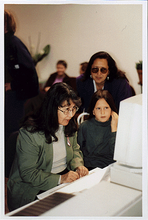
“Three generations visit CyberPowWow at Oboro”, image from http://www.cyberpowwow.net/cpw.html

artifact from http://www.cyberpowwow.net/events.html
(126)
1997
Moccasin Telegraph
Skawennati Tricia Fragnito
“It seems like every year, technology shrinks the distances between us a little more: faster planes, clearer telephone connections, and now, the Internet, with its e-mail, on-line chats, and the WWW. The result is more interaction amongst people who just a few years ago would never have even met. This is true for us Native people (x) who are on the Net as well: the moccasin telegraph has never been so strong! Even though we know that First Nations always had contact with one another, our communities, until very recently, were isolated by a certain regionalism, one that was perceived as much as it was physical, because, I think, in our collective mind we felt restricted by the reservation system.
The events of 1990 (widely known as the Mohawk Crisis) helped to change that; Native people came from across Turtle Island to support the Mohawks, knowing that they were showing solidarity with people with whom they had the most important of issues in common. Since then, a new community has been forming, one whose membership criteria is self-determined, not imposed by colonialist guidelines. This community doesn't have a territory, because it doesn't need one: it has the infinite expanses of cyberspace.” —Skawennati Tricia Fragnito
http://www.cyberpowwow.net/nation2nation/triciawork3.html
“It seems like every year, technology shrinks the distances between us a little more: faster planes, clearer telephone connections, and now, the Internet, with its e-mail, on-line chats, and the WWW. The result is more interaction amongst people who just a few years ago would never have even met. This is true for us Native people (x) who are on the Net as well: the moccasin telegraph has never been so strong! Even though we know that First Nations always had contact with one another, our communities, until very recently, were isolated by a certain regionalism, one that was perceived as much as it was physical, because, I think, in our collective mind we felt restricted by the reservation system.
The events of 1990 (widely known as the Mohawk Crisis) helped to change that; Native people came from across Turtle Island to support the Mohawks, knowing that they were showing solidarity with people with whom they had the most important of issues in common. Since then, a new community has been forming, one whose membership criteria is self-determined, not imposed by colonialist guidelines. This community doesn't have a territory, because it doesn't need one: it has the infinite expanses of cyberspace.” —Skawennati Tricia Fragnito
http://www.cyberpowwow.net/nation2nation/triciawork3.html
(127)
1997
Prayer of Thanksgiving
Melanie Printup Hope
A faithkeeper is selected to share the words of thanksgiving at the opening and closing of social, government, and ceremonial events. The prayer follows a general structure, however, individual speakers use their own distinct words and expression. This prayer follows an order, beginning with the lowest spiritual forces on Earth, continuing to those in the sky, and ending with the highest forces beyond the sky. The prayer begins with The People, and is followed by The Earth, The Waters, The Fish, The Plants, The Animals, The Trees, The Birds, Our Sustenance, The Winds, The Thunderers, The Sun, The Moon, The Stars, The Four Beings, and Handsome Lake. The prayer ends with The Creator.
The artist, Melanie Printup Hope (Tuscarora), has transformed this prayer into visuals created with beads and computer imaging. She was inspired by the faithkeepers in her community and has divided the images into three levels: the Spiritual Forces on the Earth, the Spiritual Forces in the Sky, and the Spiritual Forces beyond the Sky.
1997, Melanie Printup Hope, http://www.artinjun.ca/printup_hope/index.html
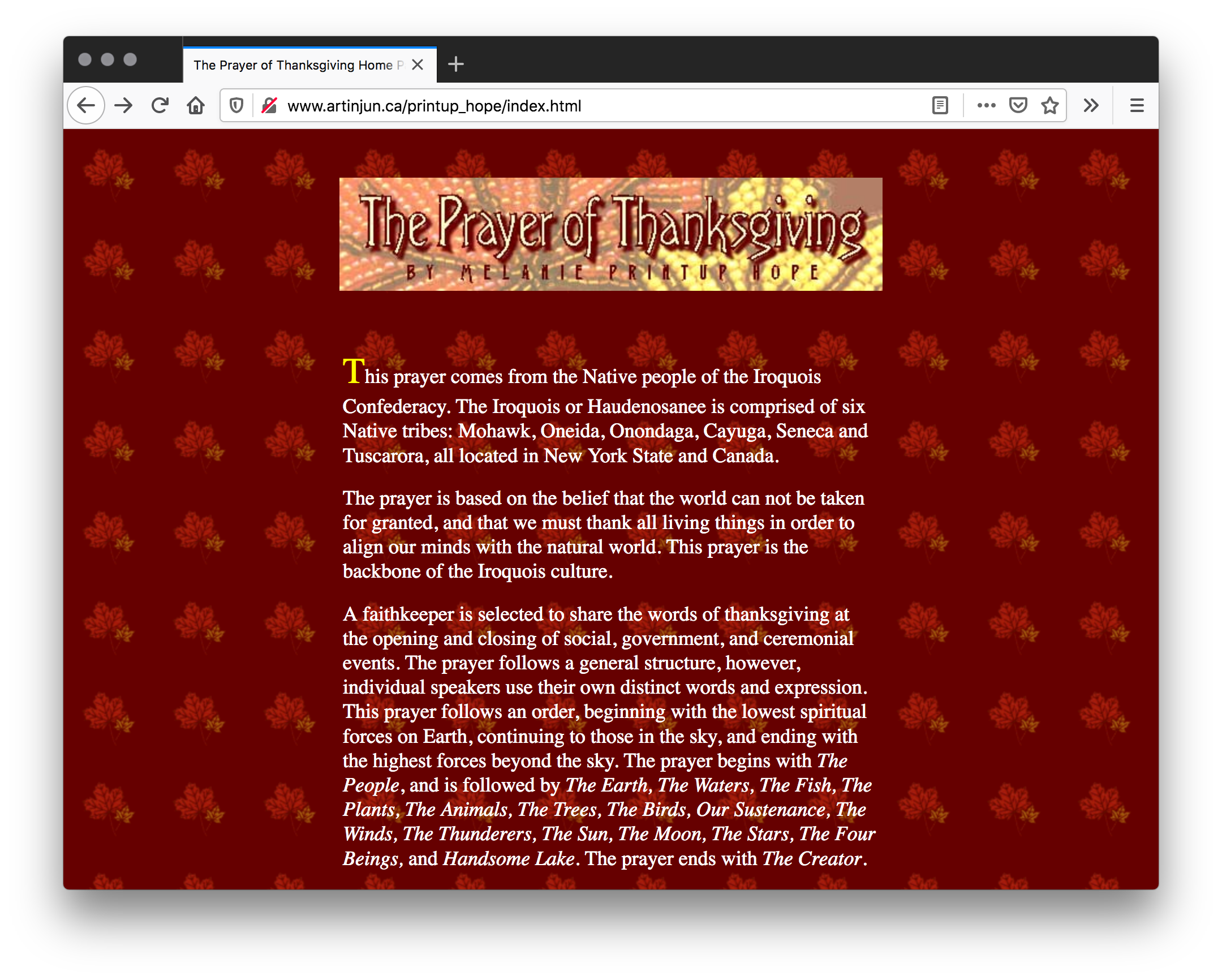
Screenshot, 2020, Firefox v76.0.1 on Mac OS 10.13.3; http://www.artinjun.ca/printup_hope/index.html
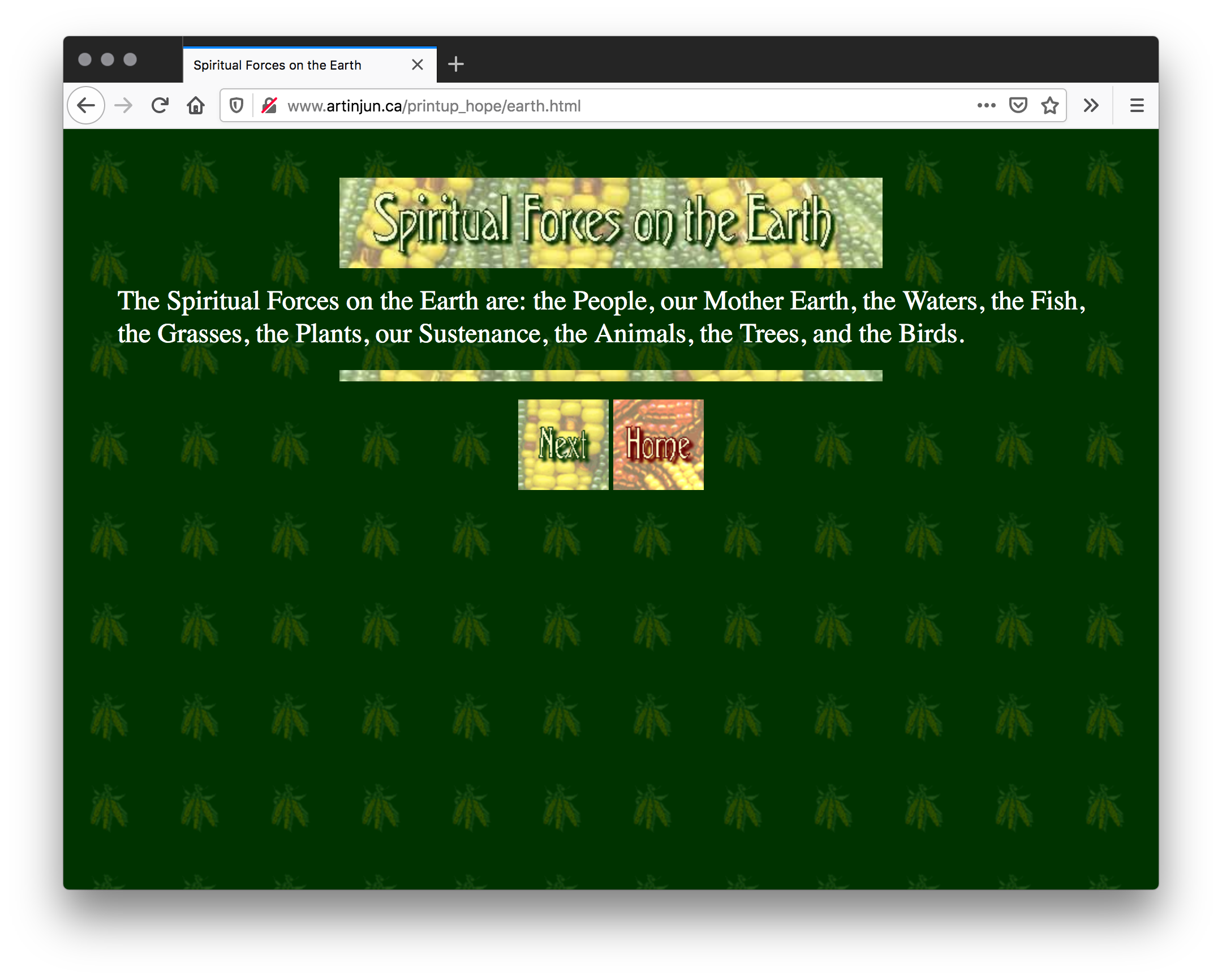
Screenshot, 2020, Firefox v76.0.1 on Mac OS 10.13.3; http://www.artinjun.ca/printup_hope/earth.html
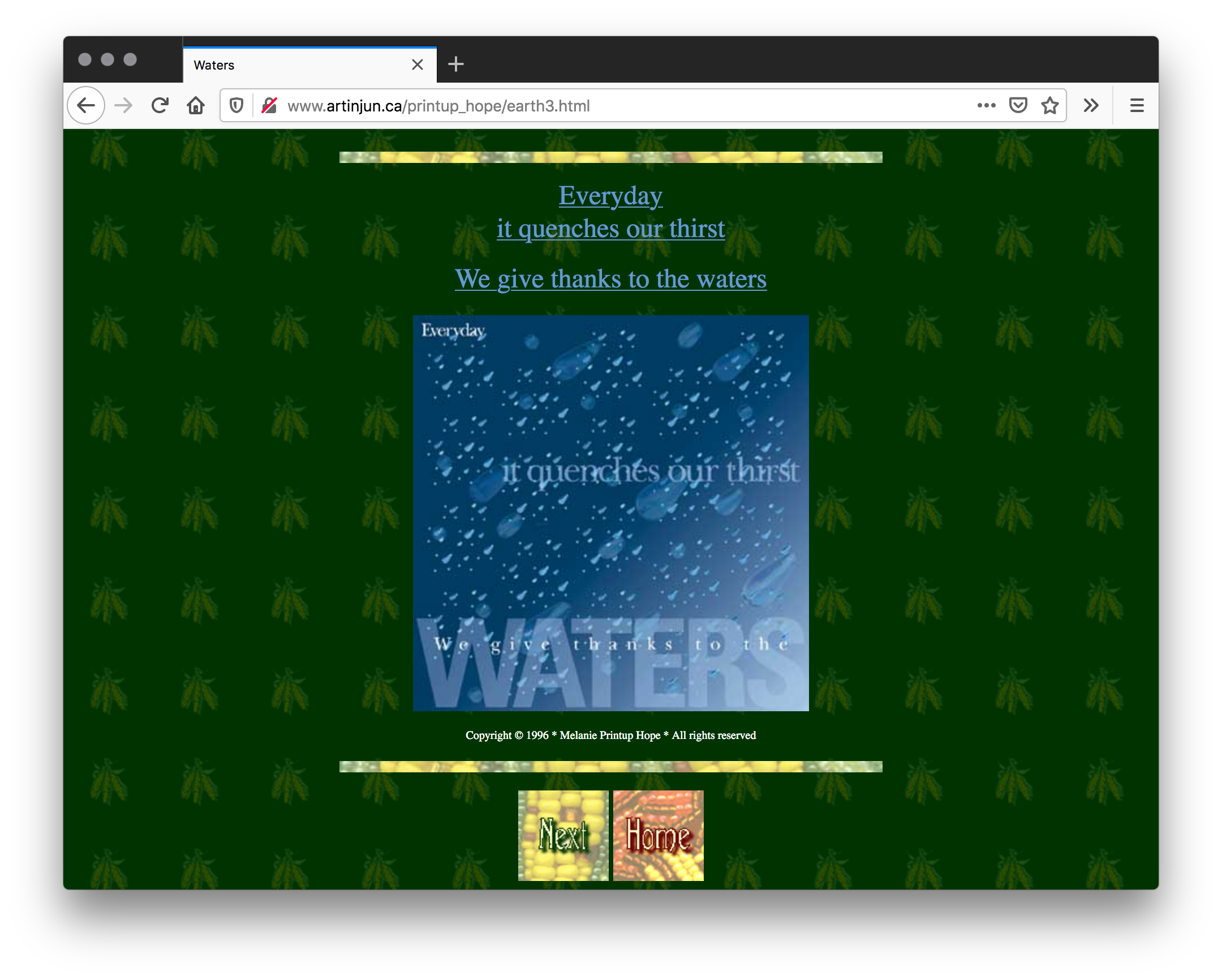
Screenshot, 2020, Firefox v76.0.1 on Mac OS 10.13.3; http://www.artinjun.ca/printup_hope/earth3.html
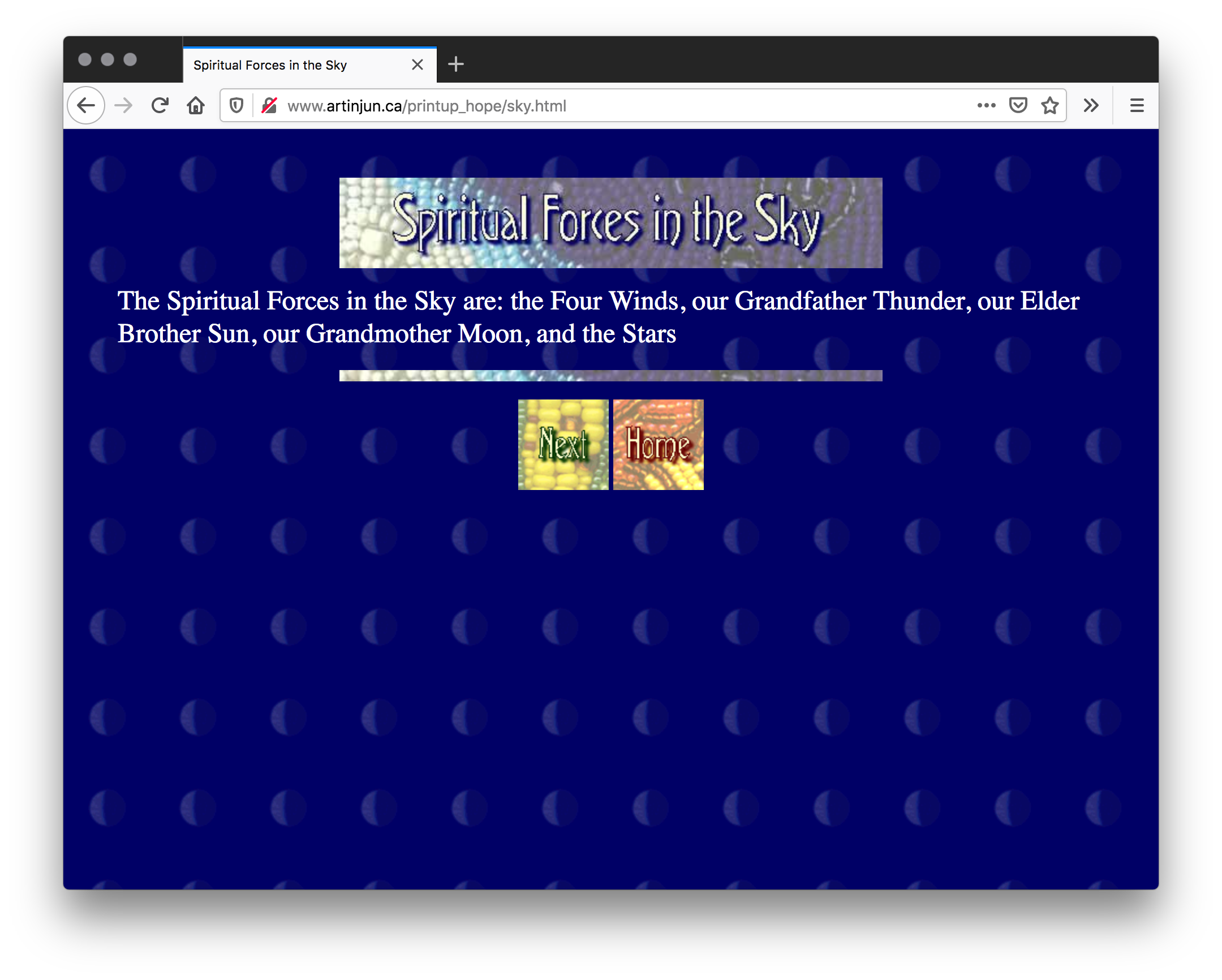
Screenshot, 2020, Firefox v76.0.1 on Mac OS 10.13.3; http://www.artinjun.ca/printup_hope/sky.html
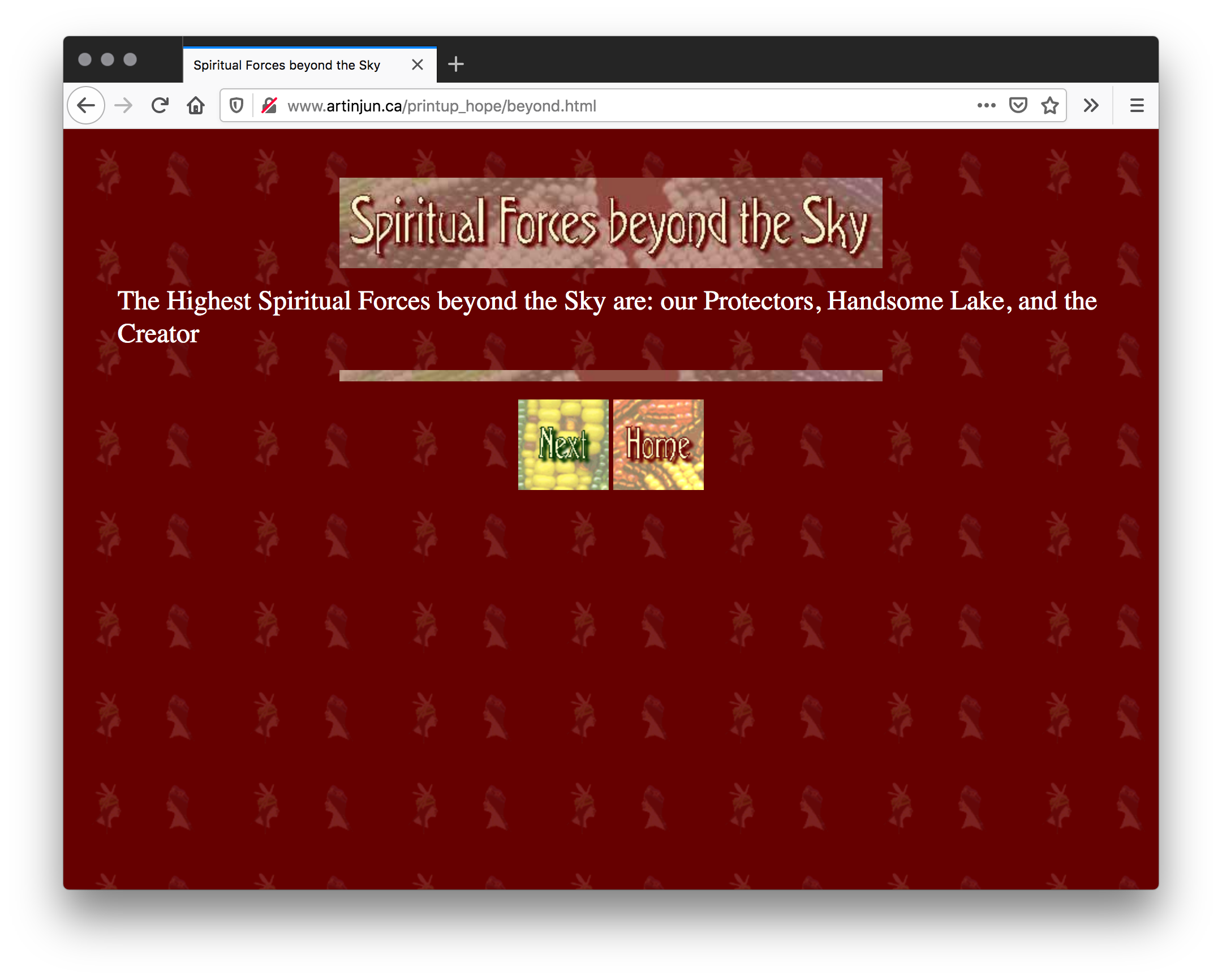
Screenshot, 2020, Firefox v76.0.1 on Mac OS 10.13.3; http://www.artinjun.ca/printup_hope/beyond.html
A faithkeeper is selected to share the words of thanksgiving at the opening and closing of social, government, and ceremonial events. The prayer follows a general structure, however, individual speakers use their own distinct words and expression. This prayer follows an order, beginning with the lowest spiritual forces on Earth, continuing to those in the sky, and ending with the highest forces beyond the sky. The prayer begins with The People, and is followed by The Earth, The Waters, The Fish, The Plants, The Animals, The Trees, The Birds, Our Sustenance, The Winds, The Thunderers, The Sun, The Moon, The Stars, The Four Beings, and Handsome Lake. The prayer ends with The Creator.
The artist, Melanie Printup Hope (Tuscarora), has transformed this prayer into visuals created with beads and computer imaging. She was inspired by the faithkeepers in her community and has divided the images into three levels: the Spiritual Forces on the Earth, the Spiritual Forces in the Sky, and the Spiritual Forces beyond the Sky.
1997, Melanie Printup Hope, http://www.artinjun.ca/printup_hope/index.html
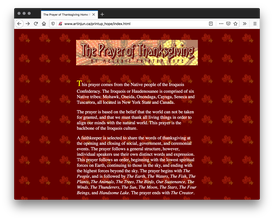
Screenshot, 2020, Firefox v76.0.1 on Mac OS 10.13.3; http://www.artinjun.ca/printup_hope/index.html
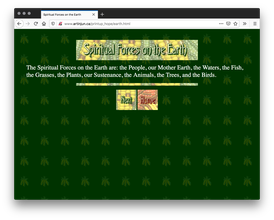
Screenshot, 2020, Firefox v76.0.1 on Mac OS 10.13.3; http://www.artinjun.ca/printup_hope/earth.html
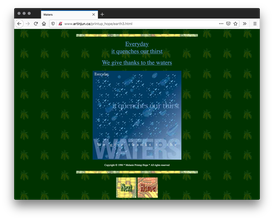
Screenshot, 2020, Firefox v76.0.1 on Mac OS 10.13.3; http://www.artinjun.ca/printup_hope/earth3.html
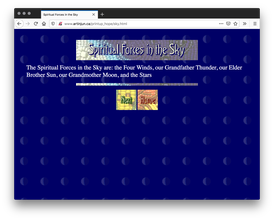
Screenshot, 2020, Firefox v76.0.1 on Mac OS 10.13.3; http://www.artinjun.ca/printup_hope/sky.html
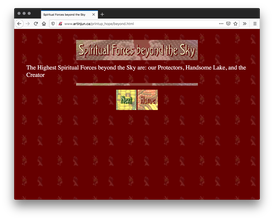
Screenshot, 2020, Firefox v76.0.1 on Mac OS 10.13.3; http://www.artinjun.ca/printup_hope/beyond.html
(128)
1997
Bad Code
VNS Matrix
A game of strategy and intelligence, treading a fine line between artwork and commercial prototype, aiming to inject alternative narratives and characters into a “shoot ’em up” dominated games market. […]
But resistance is not futile! All New Gen, (x) an omnipresent being (computer virus, bio simsystem, intelligent mist) is on a mission with the renegade tribes to sabotage the info core of the insidious data dictator. All New Gen is assisted on her mission by the DNA Sluts, a band of renegade Sheroes; along with ferals, data deviants, cortex crones and code warriors. […] Along the way the player encounters a band of superbabe sheroes, cryptic cybergoths, data deviants, cortex crones and formidable code warriors.
In the BAD CODE prototype the player visits the cyborg surgeon Dr. Orlon in his voodoo clinic and constructs a gameplay body. The player is catapulted into The Cybersquat, a multi-story derelict warehouse, where s/he interacts with various video characters and gathers clues to find one shard of the digicryst.
1997, VNS Matrix, (x) https://vnsmatrix.net/projects/bad-code; referred by Virginia Barratt and Francesca da Rimini (VNS Matrix)

image from https://vnsmatrix.net/projects/bad-code

image from https://vnsmatrix.net/projects/bad-code

image from https://vnsmatrix.net/projects/bad-code
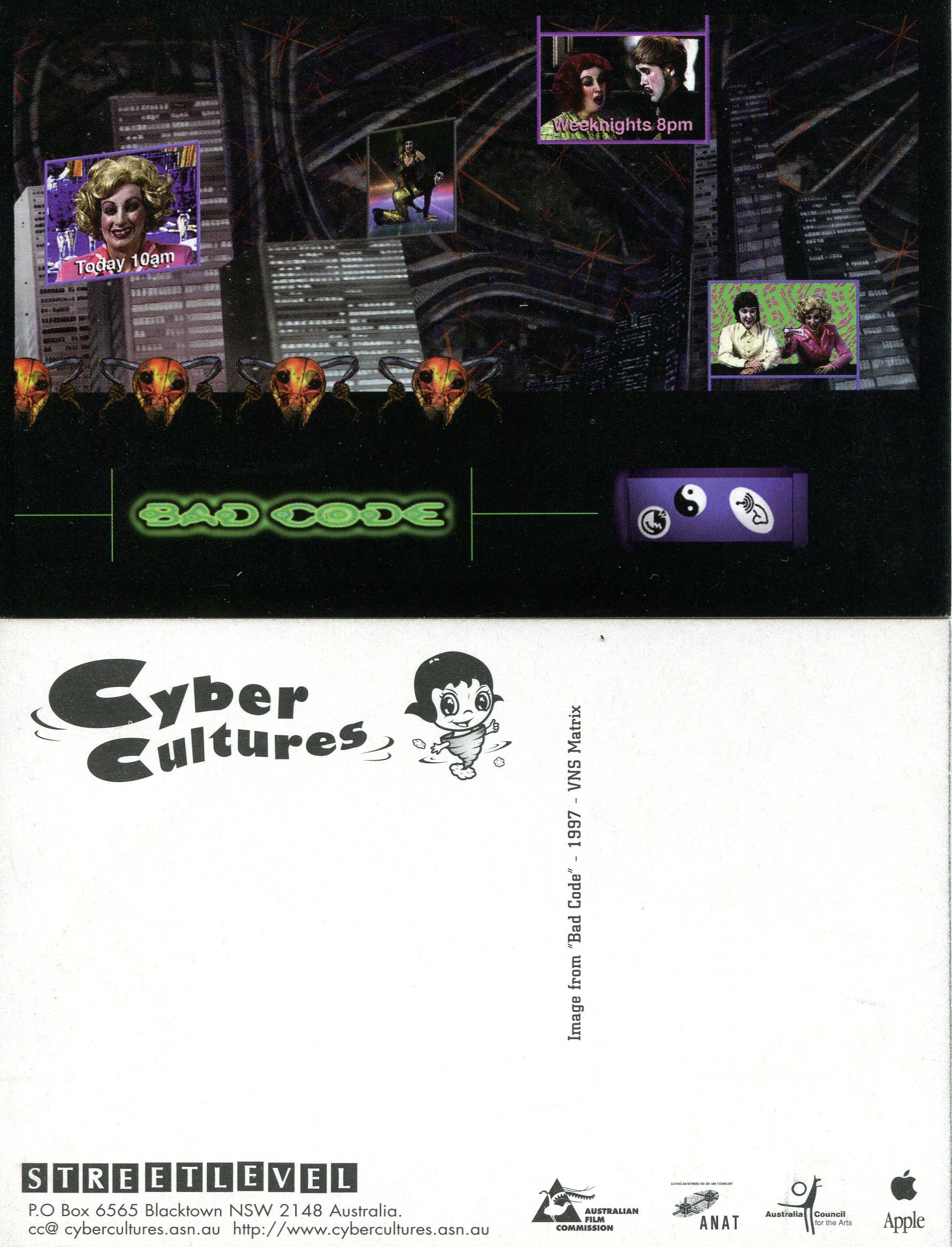
Cover of Cyber Cultures, image from https://vnsmatrix.net/projects/bad-code

image from https://vnsmatrix.net/projects/bad-code

artifact from https://vnsmatrix.net/projects/bad-code

artifact from https://vnsmatrix.net/projects/bad-code
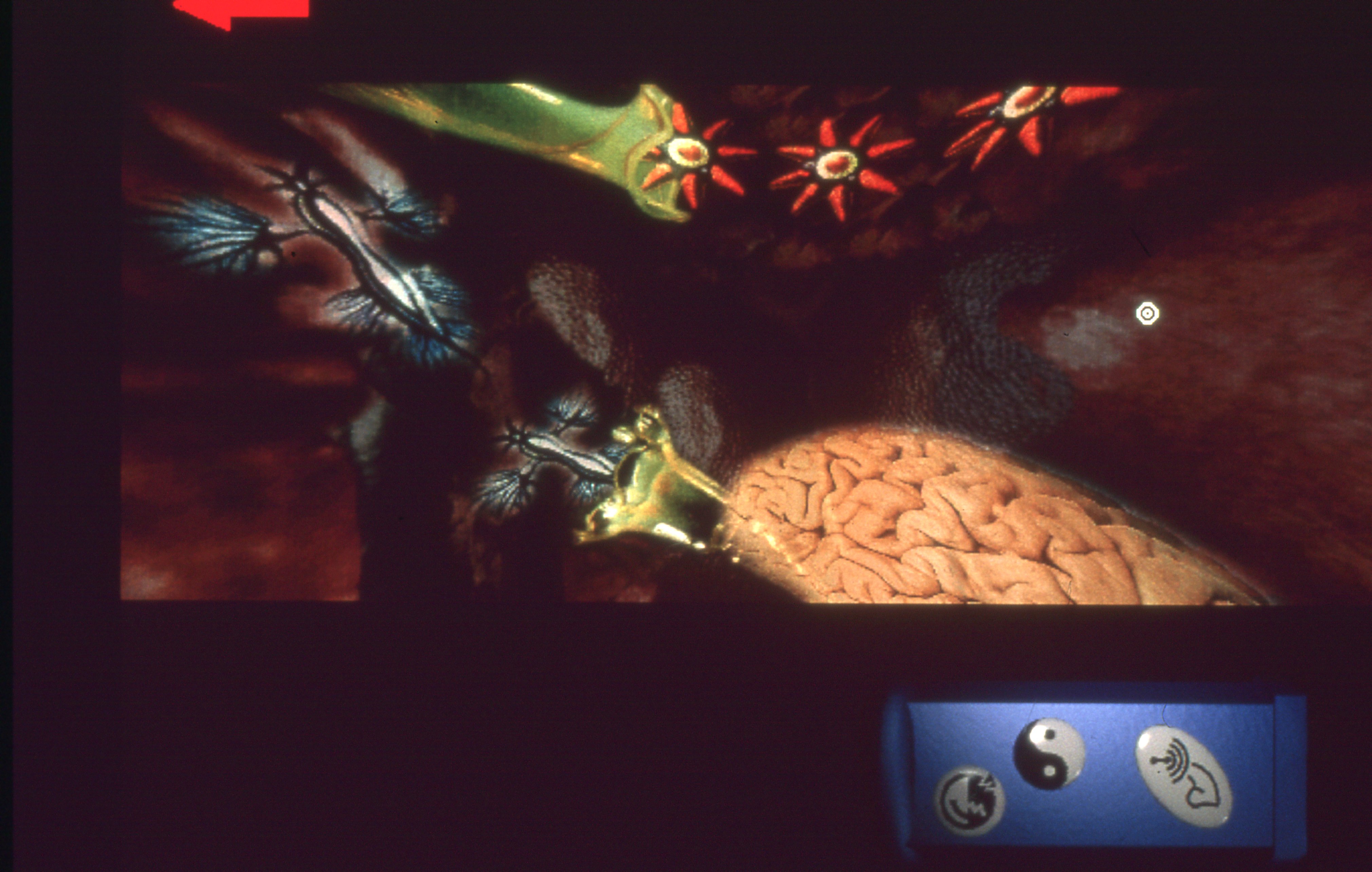
image from https://vnsmatrix.net/projects/bad-code
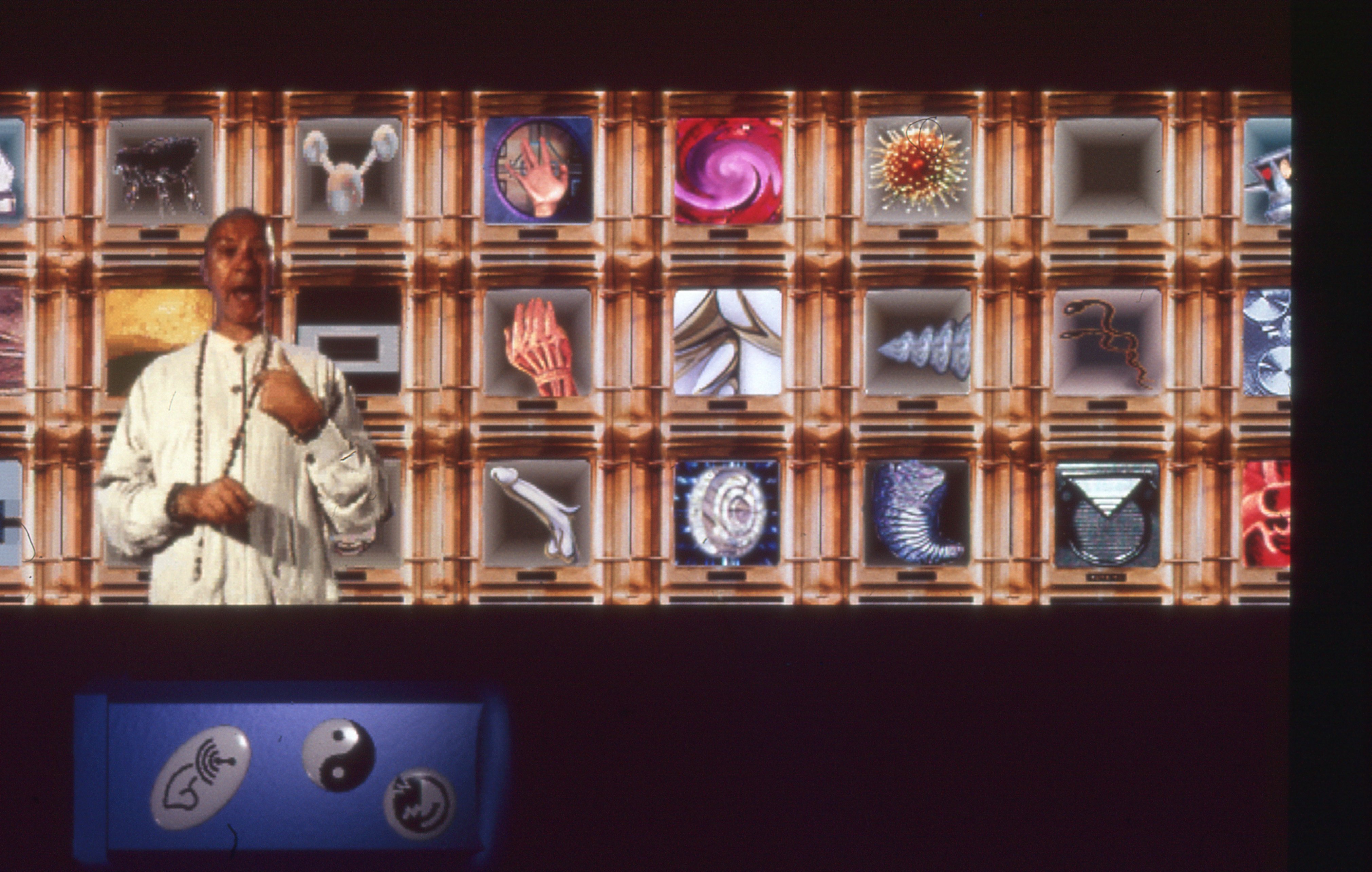
image from https://vnsmatrix.net/projects/bad-code
A game of strategy and intelligence, treading a fine line between artwork and commercial prototype, aiming to inject alternative narratives and characters into a “shoot ’em up” dominated games market. […]
But resistance is not futile! All New Gen, (x) an omnipresent being (computer virus, bio simsystem, intelligent mist) is on a mission with the renegade tribes to sabotage the info core of the insidious data dictator. All New Gen is assisted on her mission by the DNA Sluts, a band of renegade Sheroes; along with ferals, data deviants, cortex crones and code warriors. […] Along the way the player encounters a band of superbabe sheroes, cryptic cybergoths, data deviants, cortex crones and formidable code warriors.
In the BAD CODE prototype the player visits the cyborg surgeon Dr. Orlon in his voodoo clinic and constructs a gameplay body. The player is catapulted into The Cybersquat, a multi-story derelict warehouse, where s/he interacts with various video characters and gathers clues to find one shard of the digicryst.
1997, VNS Matrix, (x) https://vnsmatrix.net/projects/bad-code; referred by Virginia Barratt and Francesca da Rimini (VNS Matrix)
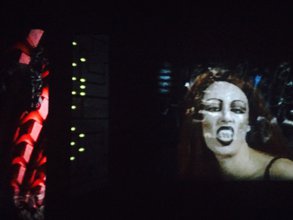
image from https://vnsmatrix.net/projects/bad-code
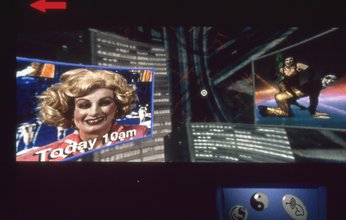
image from https://vnsmatrix.net/projects/bad-code
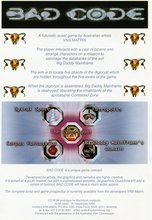
image from https://vnsmatrix.net/projects/bad-code
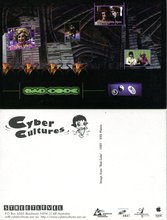
Cover of Cyber Cultures, image from https://vnsmatrix.net/projects/bad-code

image from https://vnsmatrix.net/projects/bad-code

artifact from https://vnsmatrix.net/projects/bad-code

artifact from https://vnsmatrix.net/projects/bad-code

image from https://vnsmatrix.net/projects/bad-code
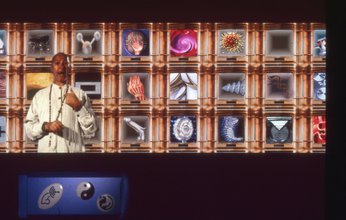
image from https://vnsmatrix.net/projects/bad-code
(129)
1997
Faceless
Manu Luksch
In an eerily familiar city, a calendar reform has dispensed with the past and the future, leaving citizens faceless, without memory or anticipation. Unimaginable happiness abounds—until a woman recovers her face …
FACELESS uses CCTV images obtained under the terms of the UK Data Protection Act as “legal readymades,” as instructed by the artist’s MANIFESTO for CCTV Filmmakers. Legislation requires that the privacy of other persons be protected when data is released—for CCTV (x) recordings, this is typically done by obscuring their faces—hence, the faceless world.
1997, Manu Luksch, dir. (London: Ambient Information Systems, 2007), 50 min.; excerpt from “FACELESS,” Manu Luksch, http://www.manuluksch.com/project/faceless/; referred by Virginia Barratt and Francesca da Rimini (VNS Matrix) (x)

image from http://www.manuluksch.com/project/faceless/
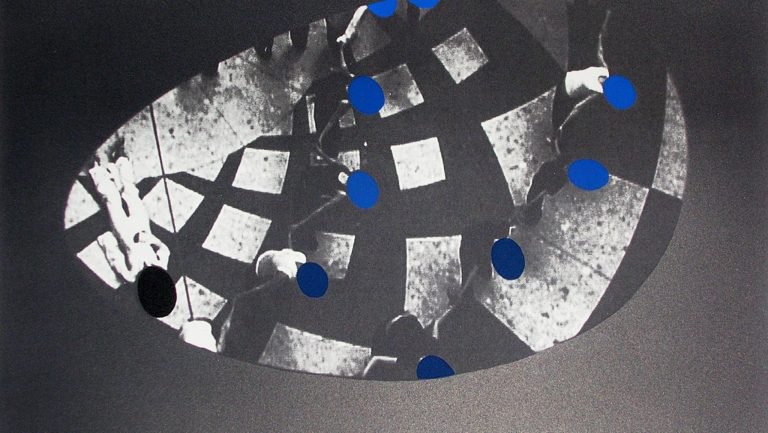
image from http://www.manuluksch.com/project/faceless/
In an eerily familiar city, a calendar reform has dispensed with the past and the future, leaving citizens faceless, without memory or anticipation. Unimaginable happiness abounds—until a woman recovers her face …
FACELESS uses CCTV images obtained under the terms of the UK Data Protection Act as “legal readymades,” as instructed by the artist’s MANIFESTO for CCTV Filmmakers. Legislation requires that the privacy of other persons be protected when data is released—for CCTV (x) recordings, this is typically done by obscuring their faces—hence, the faceless world.
1997, Manu Luksch, dir. (London: Ambient Information Systems, 2007), 50 min.; excerpt from “FACELESS,” Manu Luksch, http://www.manuluksch.com/project/faceless/; referred by Virginia Barratt and Francesca da Rimini (VNS Matrix) (x)

image from http://www.manuluksch.com/project/faceless/
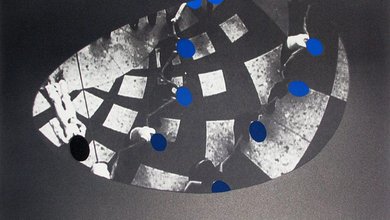
image from http://www.manuluksch.com/project/faceless/
(130)
1997
Brandon
Shu Lea Cheang
In 1993 Brandon Teena (born Teena Renae Brandon), a young transgender man, was raped and murdered in Nebraska when it was discovered that he was anatomically female. Shu Lea Cheang’s 1998 work Brandon is a multifaceted web project that uses the nonlinear and participatory nature of the Internet as a means to explore and illuminate Brandon Teena’s tragic story. From the opening image of morphing gender signifiers, Cheang propels the viewer into a probing investigation of human sexuality. It is an inquiry that utilizes hyperlinked images of a disembodied human form, once-live chat rooms on the subject of crime and punishment, and graphic moving images in order to illuminate the wide-reaching effect of Brandon’s life and death. Exploiting the highly mutable “skin” of the Internet, (x) Cheang reveals how this emerging virtual environment enables individuals to inhabit and play with different gender roles and characters. A prime example of “cyberfeminism,” Brandon utilizes technology as a means to break down social assumptions about gender in both the realm of technology and in society at large.
1997, Shu Lea Cheang; excerpt from Caitlin Jones, “Brandon,” The Guggenheim Museums and Foundation, https://www.guggenheim.org/artwork/15337; referred by Virginia Barratt and Francesca da Rimini (VNS Matrix) (x)
Editor’s Note: Brandon was the Guggenheim Museum’s first official engagement with internet art, and as one of the first works of this medium commissioned by a major institution, is often cited as a watershed moment for the then-emerging medium. —MS
https://www.guggenheim.org/artwork/15337 https://anthology.rhizome.org/brandon

image from https://www.guggenheim.org/artwork/15337
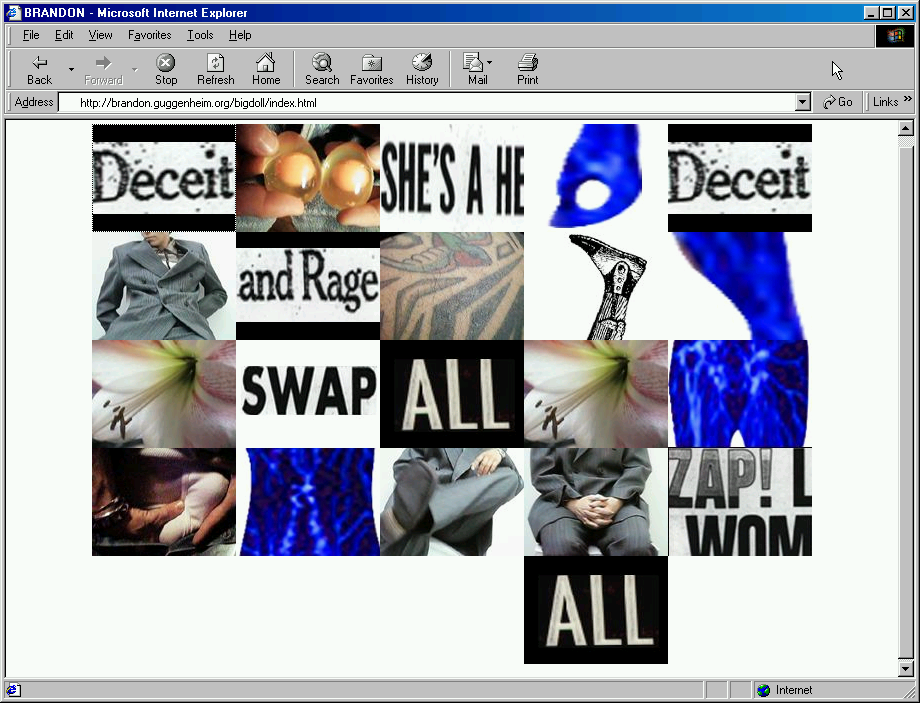
image from https://anthology.rhizome.org/brandon
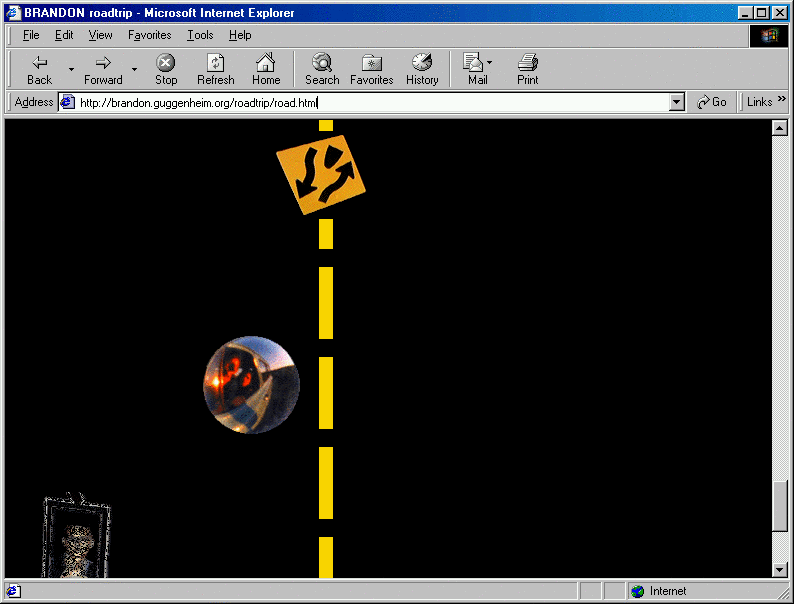
image from https://anthology.rhizome.org/brandon
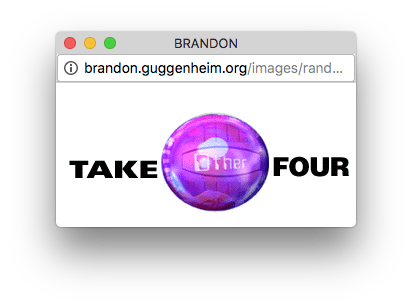
Screenshot from Brandon (2016-17 restoration).” image from https://anthology.rhizome.org/brandon
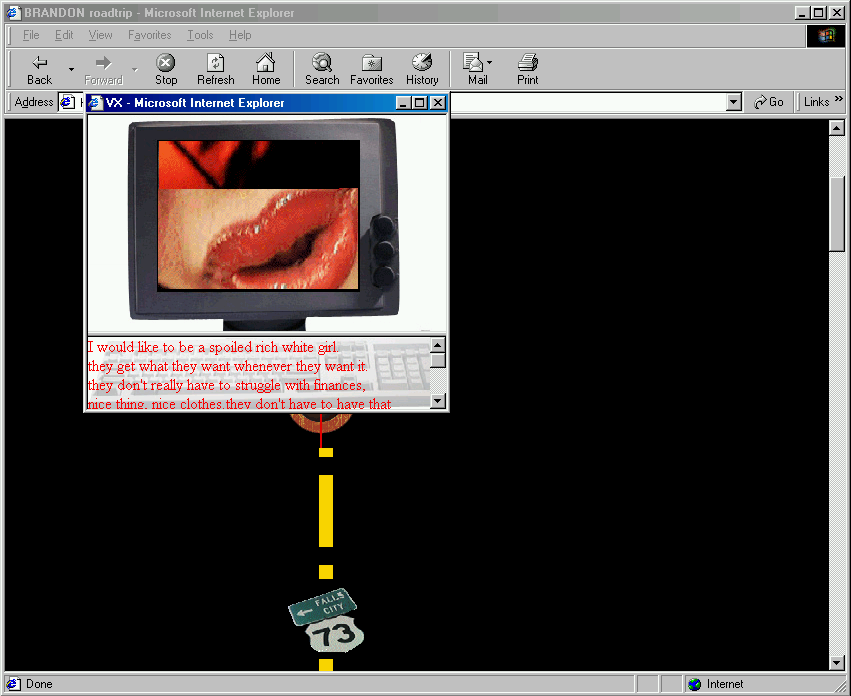
image from https://anthology.rhizome.org/brandon
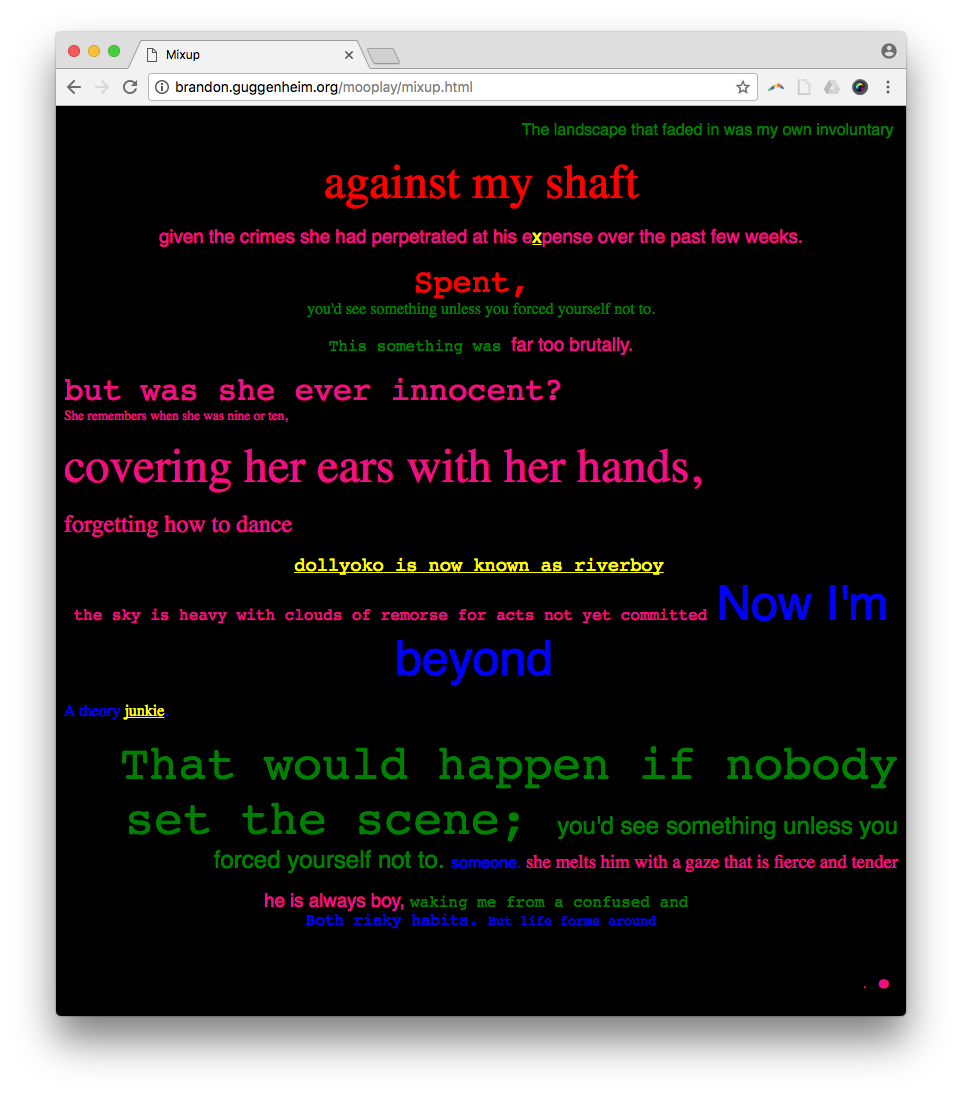
image from https://anthology.rhizome.org/brandon
In 1993 Brandon Teena (born Teena Renae Brandon), a young transgender man, was raped and murdered in Nebraska when it was discovered that he was anatomically female. Shu Lea Cheang’s 1998 work Brandon is a multifaceted web project that uses the nonlinear and participatory nature of the Internet as a means to explore and illuminate Brandon Teena’s tragic story. From the opening image of morphing gender signifiers, Cheang propels the viewer into a probing investigation of human sexuality. It is an inquiry that utilizes hyperlinked images of a disembodied human form, once-live chat rooms on the subject of crime and punishment, and graphic moving images in order to illuminate the wide-reaching effect of Brandon’s life and death. Exploiting the highly mutable “skin” of the Internet, (x) Cheang reveals how this emerging virtual environment enables individuals to inhabit and play with different gender roles and characters. A prime example of “cyberfeminism,” Brandon utilizes technology as a means to break down social assumptions about gender in both the realm of technology and in society at large.
1997, Shu Lea Cheang; excerpt from Caitlin Jones, “Brandon,” The Guggenheim Museums and Foundation, https://www.guggenheim.org/artwork/15337; referred by Virginia Barratt and Francesca da Rimini (VNS Matrix) (x)
Editor’s Note: Brandon was the Guggenheim Museum’s first official engagement with internet art, and as one of the first works of this medium commissioned by a major institution, is often cited as a watershed moment for the then-emerging medium. —MS
https://www.guggenheim.org/artwork/15337 https://anthology.rhizome.org/brandon
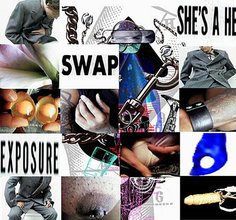
image from https://www.guggenheim.org/artwork/15337
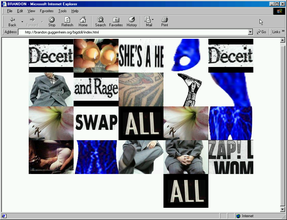
image from https://anthology.rhizome.org/brandon

image from https://anthology.rhizome.org/brandon
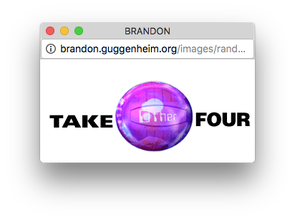
Screenshot from Brandon (2016-17 restoration).” image from https://anthology.rhizome.org/brandon
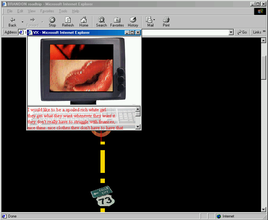
image from https://anthology.rhizome.org/brandon
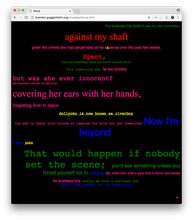
image from https://anthology.rhizome.org/brandon
(131)
1997
Small Appliances
Jennifer McCoy, Kevin McCoy
The telephone lines are swollen. It rings half way then stops.
Information coming through. Answering machine coming on.
“Sorry no one can help you now. Please leave a message at the tone.”
Answer: a good opportunity.
A knock at the door. A faint voice on the other side. Retreating footsteps.
One, two, three, then gone. Car starting up, sounds of traffic. Who's out there? Do they guess what is present in this kitchen?
The TV switches on. The appliances listen. Television news. The outside moving in. Nameless Influences. […]
Movement. A jet of water spits out from the sink. A red light in the corner of the room, whirring. Surveillance cameras watch. They’re horrified at what they see. […]
Footsteps outside. A flyer slides in from under the door. A coupon for coffee. A potential action embodied. Inventory for consumption.
The kitchen decides. The kitchen acts. The kitchen swallows.
1997, Jennifer McCoy and Kevin McCoy, http://www.thing.net/~xaf/mccoy/smapp/smapp.html; submitted by Jennifer McCoy
https://contactzones.cit.cornell.edu/artists/mccoy.html
Charlotte, NC

image from https://contactzones.cit.cornell.edu/artists/mccoy.html, pulled May 12, 2021

image from https://contactzones.cit.cornell.edu/artists/mccoy.html, pulled May 12, 2021
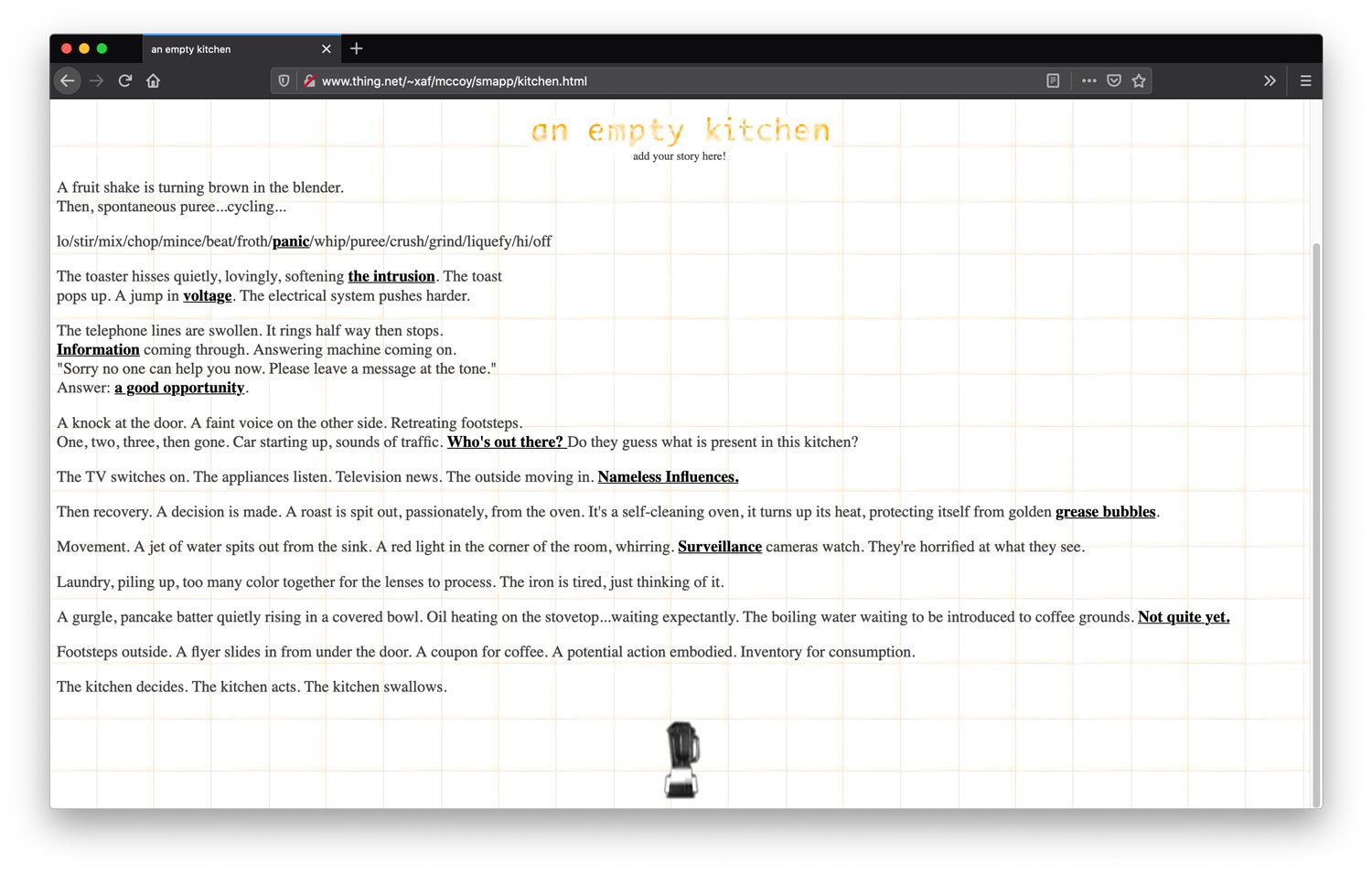
Small Applicances “Stories” page; Screenshot, 2021, Firefox v88.0.1 on Mac OS 10.15.7; http://www.thing.net/~xaf/mccoy/smapp/kitchen.html
The telephone lines are swollen. It rings half way then stops.
Information coming through. Answering machine coming on.
“Sorry no one can help you now. Please leave a message at the tone.”
Answer: a good opportunity.
A knock at the door. A faint voice on the other side. Retreating footsteps.
One, two, three, then gone. Car starting up, sounds of traffic. Who's out there? Do they guess what is present in this kitchen?
The TV switches on. The appliances listen. Television news. The outside moving in. Nameless Influences. […]
Movement. A jet of water spits out from the sink. A red light in the corner of the room, whirring. Surveillance cameras watch. They’re horrified at what they see. […]
Footsteps outside. A flyer slides in from under the door. A coupon for coffee. A potential action embodied. Inventory for consumption.
The kitchen decides. The kitchen acts. The kitchen swallows.
1997, Jennifer McCoy and Kevin McCoy, http://www.thing.net/~xaf/mccoy/smapp/smapp.html; submitted by Jennifer McCoy
https://contactzones.cit.cornell.edu/artists/mccoy.html
Charlotte, NC

image from https://contactzones.cit.cornell.edu/artists/mccoy.html, pulled May 12, 2021
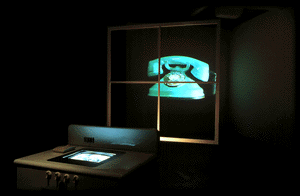
image from https://contactzones.cit.cornell.edu/artists/mccoy.html, pulled May 12, 2021

Small Applicances “Stories” page; Screenshot, 2021, Firefox v88.0.1 on Mac OS 10.15.7; http://www.thing.net/~xaf/mccoy/smapp/kitchen.html
(132)
1997
Sangre Boliviana
Lucía Grossberger-Morales
500 personas murieron de cólera en febrero de 1992 […] “[of] course it has been [eradicated] in first world countries”. […] Of course. Pero no en Cochabamba. Lucía computariza la tragedia en clave de humor negro, un formato que incomoda al puritanismo angloamericano: “[…] they aren’t sanitized enough for North American sensibilities. I have to admit sometimes I get really frustrated with how ethnocentric, isolated and intolerant North Americans are”. Lucía alteriza así al estadounidense, se instala en un centro computarizado que analiza con ojos tecnológicos su pasado, sus raíces, que critica. El trabajo Sangre Boliviana encapsula ese sentimiento de hibridez […] Sangre Boliviana es una brillante propuesta multimediática que elabora […] los sentimientos encontrados de centro y periferia, de pertenencia y exilio, de integración y des-integración. […] Como la propia Lucía, la muchacha que aparece en esa imagen se desdibuja entre entidades en sepia y bajo relieve, entre ese “Third World” y el “Primer Mundo” al que apela su reflexión bilingüe. […] Con su propuesta tecnopoética, Lucía Grossberger Morales, personalidad híbrida y múltiple, comenta y denuncia la exclusión. Se inserta en la máquina. Seculariza.
500 people died of cholera in February 1992 […] “[Of] course it has been [eradicated] in first world countries.” […] Of course. But not in Cochabamba. Lucía computerizes the tragedy in the key of black humor, a format that makes Anglo-American Puritanism uncomfortable: “[…] they aren’t sanitized enough for North American sensibilities […]” Lucia thus alters the American, she settles in a computerized center that analyzes with technological eyes her past, her roots, which she criticizes. The work Sangre Boliviana encapsulates that feeling of hybridity […] Sangre Boliviana is a brilliant multimedia proposal that elaborates […] the conflicting feelings of center and periphery, of belonging and exile, of integration and dis-integration. […] Like Lucía herself, the girl who appears in that image is blurred between entities in sepia and low relief, between that “Third World” and the “First World” to which her bilingual reflection appeals. […] With her technopoetic proposal, Lucía Grossberger Morales, a hybrid and multiple personality, comments and denounces the exclusion. She is inserted into the machine. She secularizes.
1997, Lucía Grossberger-Morales, https://luciagrossbergermorales.com/sangre-boliviana.html; excerpt from Tina Escaja, “Ciber/reflexiones,” Espacio Luke, http://www.espacioluke.com/2005/Diciembre2005/tina.html
500 personas murieron de cólera en febrero de 1992 […] “[of] course it has been [eradicated] in first world countries”. […] Of course. Pero no en Cochabamba. Lucía computariza la tragedia en clave de humor negro, un formato que incomoda al puritanismo angloamericano: “[…] they aren’t sanitized enough for North American sensibilities. I have to admit sometimes I get really frustrated with how ethnocentric, isolated and intolerant North Americans are”. Lucía alteriza así al estadounidense, se instala en un centro computarizado que analiza con ojos tecnológicos su pasado, sus raíces, que critica. El trabajo Sangre Boliviana encapsula ese sentimiento de hibridez […] Sangre Boliviana es una brillante propuesta multimediática que elabora […] los sentimientos encontrados de centro y periferia, de pertenencia y exilio, de integración y des-integración. […] Como la propia Lucía, la muchacha que aparece en esa imagen se desdibuja entre entidades en sepia y bajo relieve, entre ese “Third World” y el “Primer Mundo” al que apela su reflexión bilingüe. […] Con su propuesta tecnopoética, Lucía Grossberger Morales, personalidad híbrida y múltiple, comenta y denuncia la exclusión. Se inserta en la máquina. Seculariza.
500 people died of cholera in February 1992 […] “[Of] course it has been [eradicated] in first world countries.” […] Of course. But not in Cochabamba. Lucía computerizes the tragedy in the key of black humor, a format that makes Anglo-American Puritanism uncomfortable: “[…] they aren’t sanitized enough for North American sensibilities […]” Lucia thus alters the American, she settles in a computerized center that analyzes with technological eyes her past, her roots, which she criticizes. The work Sangre Boliviana encapsulates that feeling of hybridity […] Sangre Boliviana is a brilliant multimedia proposal that elaborates […] the conflicting feelings of center and periphery, of belonging and exile, of integration and dis-integration. […] Like Lucía herself, the girl who appears in that image is blurred between entities in sepia and low relief, between that “Third World” and the “First World” to which her bilingual reflection appeals. […] With her technopoetic proposal, Lucía Grossberger Morales, a hybrid and multiple personality, comments and denounces the exclusion. She is inserted into the machine. She secularizes.
1997, Lucía Grossberger-Morales, https://luciagrossbergermorales.com/sangre-boliviana.html; excerpt from Tina Escaja, “Ciber/reflexiones,” Espacio Luke, http://www.espacioluke.com/2005/Diciembre2005/tina.html
(133)
1997
Line
Melinda Rackham, Mark Rossiter
The Screen
has replaced
the imaginary world of the mirror,
of the divided self and the stage
It is my line out
and my line in
[…]
The seeming void of
Virtuality
is a material space
Every action, every communication
has a moment of contact,
a point of transmission,
a line that is crossed,
a change that occurs
1997, Melinda Rackham and Mark Rossiter, https://subtle.net/line/
The Screen
has replaced
the imaginary world of the mirror,
of the divided self and the stage
It is my line out
and my line in
[…]
The seeming void of
Virtuality
is a material space
Every action, every communication
has a moment of contact,
a point of transmission,
a line that is crossed,
a change that occurs
1997, Melinda Rackham and Mark Rossiter, https://subtle.net/line/
(134)
1997
Leaky Bodies and Boundaries: Feminism, Postmodernism and (Bio)ethics
Margrit Shildrick
Drawing on postmodernist analyses, Leaky Bodies and Boundaries presents a feminist investigation into the marginalization of women within western discourse that denies female moral agency and embodiment. With reference to contemporary and historical issues in biomedicine, the book argues that the boundaries of both the subject and the body are no longer secure. The aim is both to valorise women and to suggest that “leakiness” may be the very ground for a postmodern feminist ethic.
The contribution made by Leaky Bodies and Boundaries is to go beyond modernist feminisms to radically displace the mechanisms by which women are devalued. The anxiety that postmodernism cannot yield an ethics, nor advance feminist concerns is addressed. This book will provide invaluable reading for those studying feminist philosophy, cultural studies and sociology.
1997, Margrit Shildrick, published by Routledge, https://doi.org/10.4324/9781315004952; submitted by Marco Donnarumma
Drawing on postmodernist analyses, Leaky Bodies and Boundaries presents a feminist investigation into the marginalization of women within western discourse that denies female moral agency and embodiment. With reference to contemporary and historical issues in biomedicine, the book argues that the boundaries of both the subject and the body are no longer secure. The aim is both to valorise women and to suggest that “leakiness” may be the very ground for a postmodern feminist ethic.
The contribution made by Leaky Bodies and Boundaries is to go beyond modernist feminisms to radically displace the mechanisms by which women are devalued. The anxiety that postmodernism cannot yield an ethics, nor advance feminist concerns is addressed. This book will provide invaluable reading for those studying feminist philosophy, cultural studies and sociology.
1997, Margrit Shildrick, published by Routledge, https://doi.org/10.4324/9781315004952; submitted by Marco Donnarumma
(135)
1997–
1999
Maxi
Janelle Brown, Heather Irwin, Rosemary Pepper, Molly Wright Steenson
As urban women, we have certain common experiences—from the way we see the world to the way the world sees us, from the products we buy to the media we consume, from the things we are told to the beliefs that we actually hold.
Maxi is a place to talk about those experiences, where we can read intelligent thoughts on the issues and objects that have meaning in our lives, whether it’s lipstick or politics or sex. We believe in looking at the positive as well as the negative. Women need a friendly environment in which to empower and inspire ourselves; in response to that need, we’ve created Maxi.
1997–1999, Janelle Brown, Heather Irwin, Rosemary Pepper, Molly Wright Steenson, https://web.archive.org/web/20000510192328/http://www.maximag.com/, excerpt from Maxi’s Mission https://web.archive.org/web/20000615005933fw_/http://maximag.com/aboutus/index.html; submitted by Molly Wright Steenson

Maxi homepage, Screenshot, 2022, Firefox v108.0.1 on Mac OS 10.15.7; https://web.archive.org/web/20000510192328/http://www.maximag.com/
As urban women, we have certain common experiences—from the way we see the world to the way the world sees us, from the products we buy to the media we consume, from the things we are told to the beliefs that we actually hold.
Maxi is a place to talk about those experiences, where we can read intelligent thoughts on the issues and objects that have meaning in our lives, whether it’s lipstick or politics or sex. We believe in looking at the positive as well as the negative. Women need a friendly environment in which to empower and inspire ourselves; in response to that need, we’ve created Maxi.
1997–1999, Janelle Brown, Heather Irwin, Rosemary Pepper, Molly Wright Steenson, https://web.archive.org/web/20000510192328/http://www.maximag.com/, excerpt from Maxi’s Mission https://web.archive.org/web/20000615005933fw_/http://maximag.com/aboutus/index.html; submitted by Molly Wright Steenson

Maxi homepage, Screenshot, 2022, Firefox v108.0.1 on Mac OS 10.15.7; https://web.archive.org/web/20000510192328/http://www.maximag.com/
(136)
1998–
2003
Talking Drum
Jacuma Kambui
“The Talking Drum Collective is a collective of organizers and website owners who have came together in the spirit Unity for the upliftment of Afrikan People. Over the years we have become the premier Afrikan informational websites. Some of the more popular websites include: TheTalkingDrum.Com (The Talking Drum); AssataShakur.Org, which is currently engaged in the Hands Off Assata Campaign; and Afrikan.Net, who constantly updates mailing list with information about Political Prisoners and other issues.”
“We are a not for profit, advertisement free, self supported, 100% African Owned, Designed, Maintained, Hosted and Operated site, we feature African related links geared towards liberation, empowerment, unification and justice, We offer listings of sites you probably will not find on most search engines, Free E-mail, Chat, Discussion Forums and plenty of reference material. We seek to be a bridge, connecting our Peoples with uplifting sites,.... picture us as drummers playing sounds of liberation, can you hear the drum?”
“The contents of all material available on these Internet sites: (thetalkingdrum.com, thetalkingdrums.com, thetalkingdrums.org, thetalkingdrums.net, panafrican.tv, africandrum.net, thedrum.tv, thedrum.org, thetalkingdrum.tv, talkingdrum.tv, talkingdrum.org) are copyrighted by The Talking Drum Collective unless otherwise indicated.” —Jacuma Kambui, excerpt from homepage
https://web.archive.org/web/20030406052041/http://www.thetalkingdrum.com/
Stone Mountain, GA
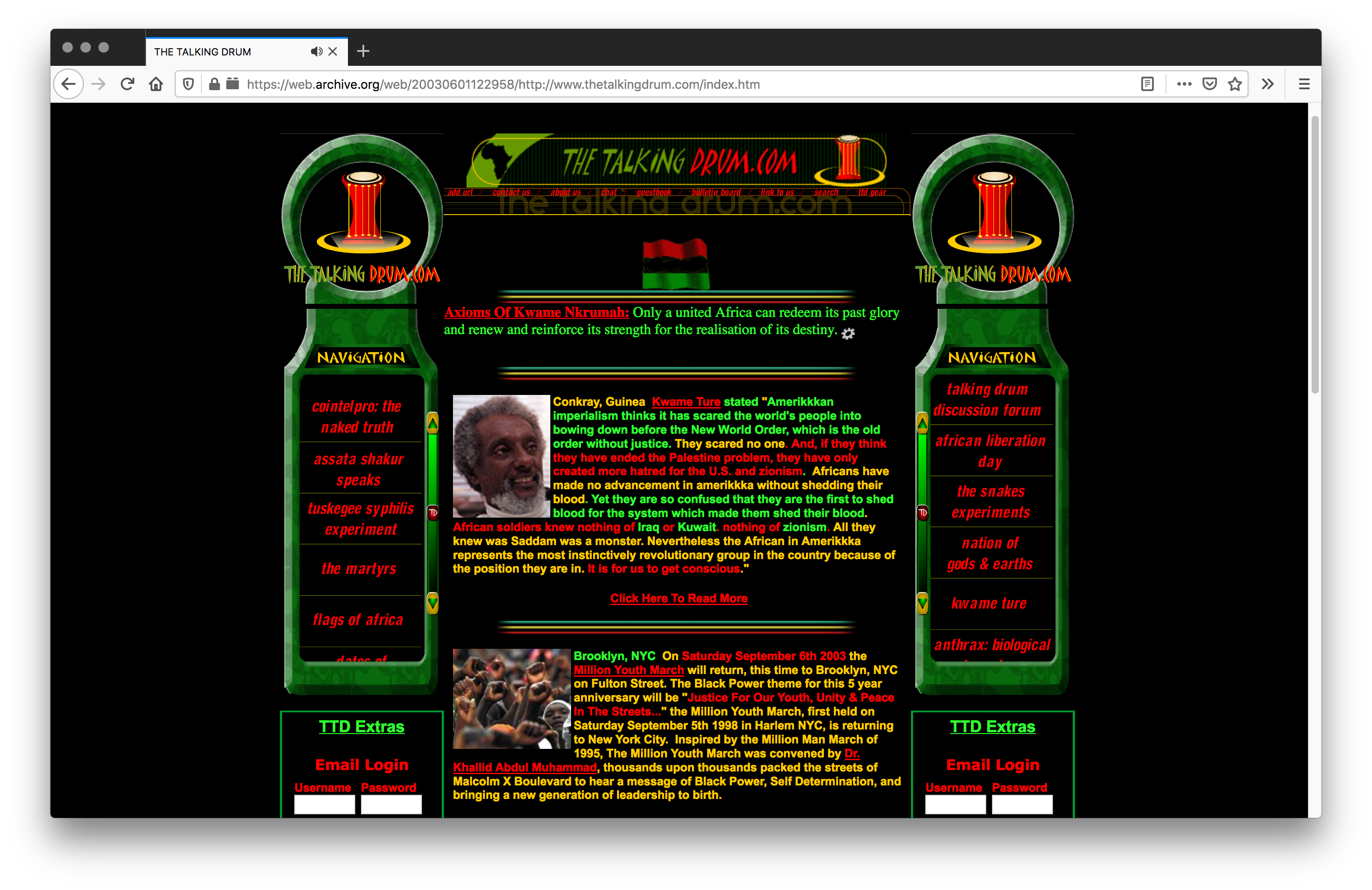
“The Talking Drum” landing page, Wayback Machine, June 1, 2003; Screenshot, 2020, Firefox v76.0.1 on Mac OS 10.13.3; https://web.archive.org/web/20030601122958/http://www.thetalkingdrum.com/index.html

Banner gif from Wayback Machine, June 21, 2003; https://web.archive.org/web/20030621124244/http://www.thetalkingdrum.com/link.html
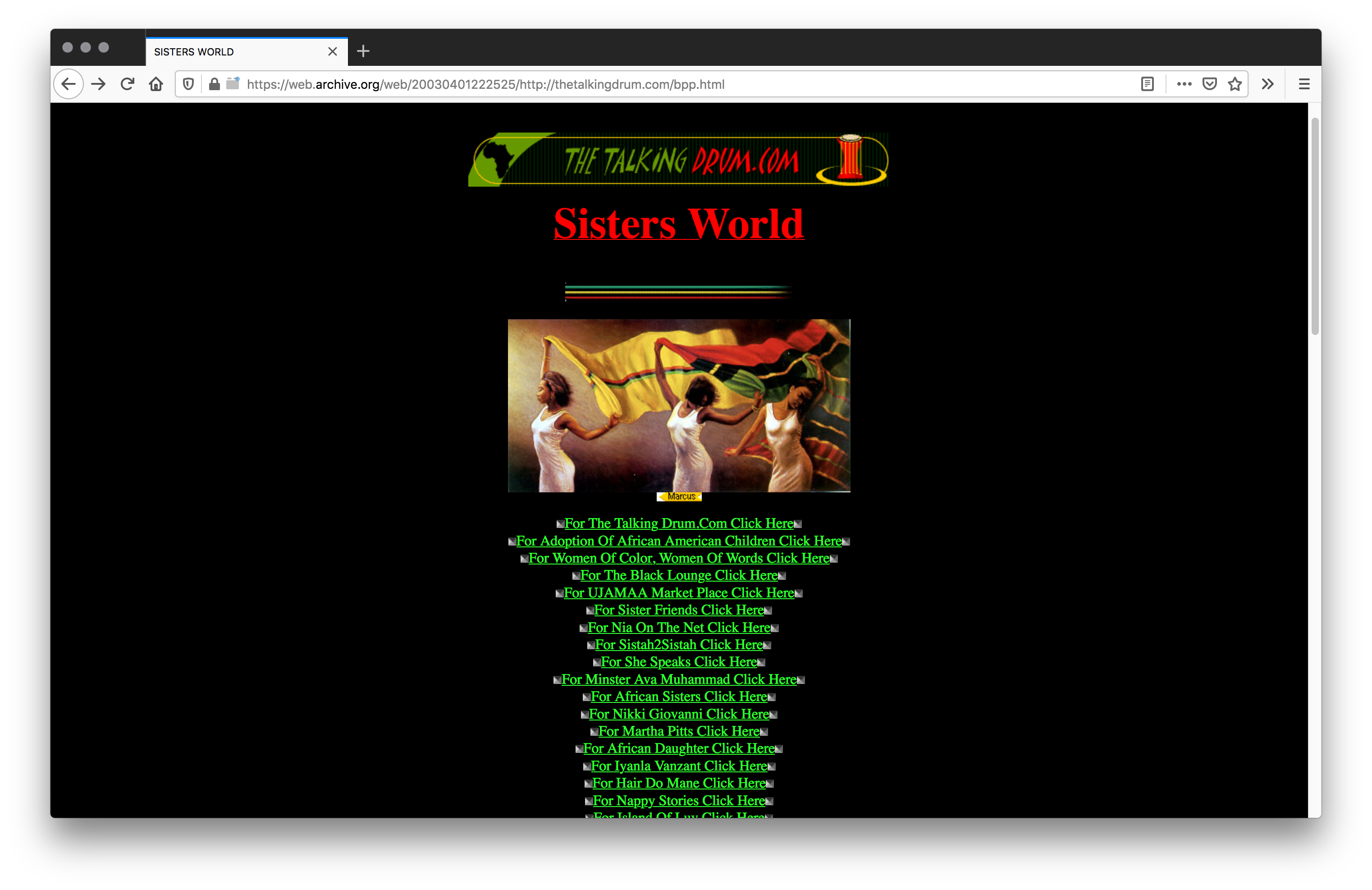
“Sister’s World”, Wayback Machine, April 1, 2003; Screenshot, 2020, Firefox v76.0.1 on Mac OS 10.13.3; https://web.archive.org/web/20030401222525/http://thetalkingdrum.com/bpp.html
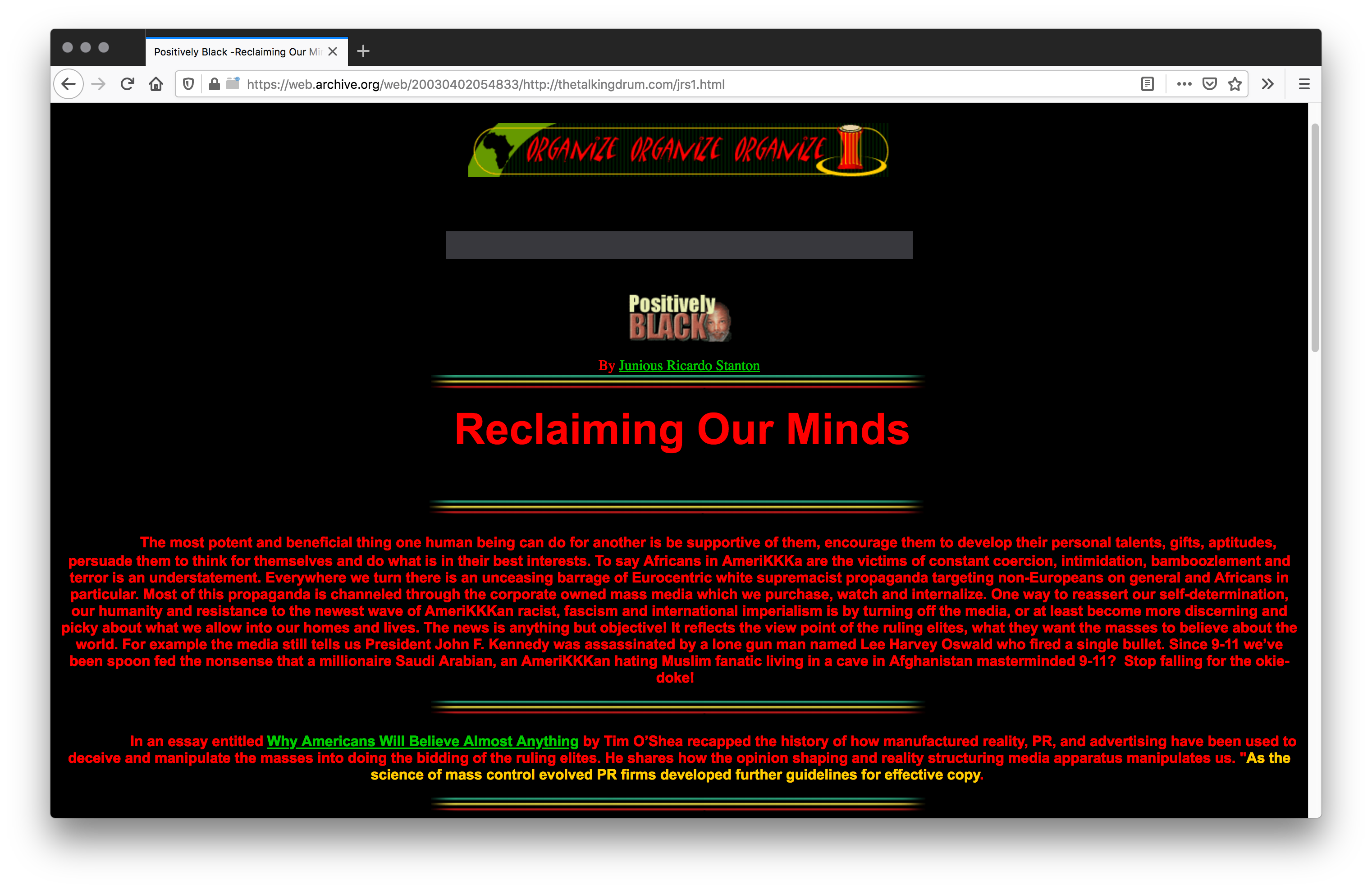
“Reclaiming Our Minds,” Wayback Machine, April 2, 2003; Screenshot, 2020, Firefox v76.0.1 on Mac OS 10.13.3; https://web.archive.org/web/20030402054833/http://www.thetalkingdrum.com/jrs1.html
“The Talking Drum Collective is a collective of organizers and website owners who have came together in the spirit Unity for the upliftment of Afrikan People. Over the years we have become the premier Afrikan informational websites. Some of the more popular websites include: TheTalkingDrum.Com (The Talking Drum); AssataShakur.Org, which is currently engaged in the Hands Off Assata Campaign; and Afrikan.Net, who constantly updates mailing list with information about Political Prisoners and other issues.”
“We are a not for profit, advertisement free, self supported, 100% African Owned, Designed, Maintained, Hosted and Operated site, we feature African related links geared towards liberation, empowerment, unification and justice, We offer listings of sites you probably will not find on most search engines, Free E-mail, Chat, Discussion Forums and plenty of reference material. We seek to be a bridge, connecting our Peoples with uplifting sites,.... picture us as drummers playing sounds of liberation, can you hear the drum?”
“The contents of all material available on these Internet sites: (thetalkingdrum.com, thetalkingdrums.com, thetalkingdrums.org, thetalkingdrums.net, panafrican.tv, africandrum.net, thedrum.tv, thedrum.org, thetalkingdrum.tv, talkingdrum.tv, talkingdrum.org) are copyrighted by The Talking Drum Collective unless otherwise indicated.” —Jacuma Kambui, excerpt from homepage
https://web.archive.org/web/20030406052041/http://www.thetalkingdrum.com/
Stone Mountain, GA
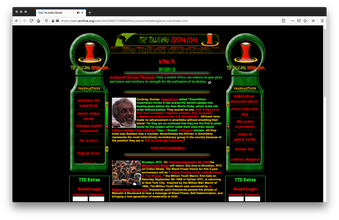
“The Talking Drum” landing page, Wayback Machine, June 1, 2003; Screenshot, 2020, Firefox v76.0.1 on Mac OS 10.13.3; https://web.archive.org/web/20030601122958/http://www.thetalkingdrum.com/index.html

Banner gif from Wayback Machine, June 21, 2003; https://web.archive.org/web/20030621124244/http://www.thetalkingdrum.com/link.html

“Sister’s World”, Wayback Machine, April 1, 2003; Screenshot, 2020, Firefox v76.0.1 on Mac OS 10.13.3; https://web.archive.org/web/20030401222525/http://thetalkingdrum.com/bpp.html
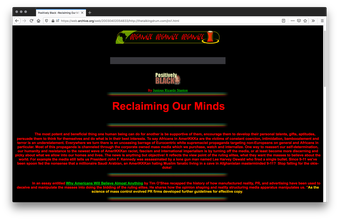
“Reclaiming Our Minds,” Wayback Machine, April 2, 2003; Screenshot, 2020, Firefox v76.0.1 on Mac OS 10.13.3; https://web.archive.org/web/20030402054833/http://www.thetalkingdrum.com/jrs1.html
(137)
1998
Slimy Metaphors for Technology: “The Clitoris is a Direct Line to the Matrix”
Jyanni Steffensen
All New Gen can be read as a re-invention, a re-visioning and reconfiguration of (mutating) female subjectivities. The “cunt” signified scenarios are […] redeployed as a site for the construction of libidinal pleasures […] in technological production, in sexy technology—a feminised and feminist erotics of technocultural production and politics. Cyberspace in VNS terms is re-appropriated from a symbolic order of masculine rationalist high-tech domination and recoded as feminine. The name of the game, in VNS appropriations of future languages, is “in-filtration and re-mapping the possible futures outside the (chromo)phallic patriarchal code.” In this imaginative game of infiltration and subversion, of Big Daddy Mainframe, of masculine techno-production and its discourses, VNS appropriate paternal organs, spermatic metaphors, and metaphors of viral infection as well as those references on female genitals and bodily processes. The DNA Sluts are imaged as sort of pumped-up barbie dolls (“muscular hybrids”) with great laser beams shooting from their genital area. These may be read as magical phalli (undecideably clitoral or penile). Spermatic and penetrative metaphors are utilized in imaging the mutating female subject as a virus which infiltrates/ impregnates the techno-body of Big Daddy’s imperialistically and militaristically deployed data banks.
1998, Jyanni Steffensen, Mujeres en Red, October 1998, http://www.mujeresenred.net/spip.php?article1538
http://ensemble.va.com.au/array/steff_01.html#fn3_ret
All New Gen can be read as a re-invention, a re-visioning and reconfiguration of (mutating) female subjectivities. The “cunt” signified scenarios are […] redeployed as a site for the construction of libidinal pleasures […] in technological production, in sexy technology—a feminised and feminist erotics of technocultural production and politics. Cyberspace in VNS terms is re-appropriated from a symbolic order of masculine rationalist high-tech domination and recoded as feminine. The name of the game, in VNS appropriations of future languages, is “in-filtration and re-mapping the possible futures outside the (chromo)phallic patriarchal code.” In this imaginative game of infiltration and subversion, of Big Daddy Mainframe, of masculine techno-production and its discourses, VNS appropriate paternal organs, spermatic metaphors, and metaphors of viral infection as well as those references on female genitals and bodily processes. The DNA Sluts are imaged as sort of pumped-up barbie dolls (“muscular hybrids”) with great laser beams shooting from their genital area. These may be read as magical phalli (undecideably clitoral or penile). Spermatic and penetrative metaphors are utilized in imaging the mutating female subject as a virus which infiltrates/ impregnates the techno-body of Big Daddy’s imperialistically and militaristically deployed data banks.
1998, Jyanni Steffensen, Mujeres en Red, October 1998, http://www.mujeresenred.net/spip.php?article1538
http://ensemble.va.com.au/array/steff_01.html#fn3_ret
(138)
1998
subRosa
Laleh Mehran, Hyla Willis, Steffi Domike, Lucia Sommer, Faith Wilding
subRosa asks: How can collective feminist organizational savvy, critical insights, and creative energy, be used to craft a Server with a new “operating system” that can re-connect us in mindful, collaborative, and pleasurable ways? What skills, imagination, experience, and resources do we all bring to the table? And how can we instigate active, nurturing, convivial being-in-common, both in the here where we live, and in ever-expanding global territories both virtual and embodied to which we are connected?
What are the politics of a Feminist Server? Can we hack the very concept of a “Server” to think differently about how the collective itself is a Server? […]
subRosa proposes that the Collective-as-Server can foment feminist struggle and practices in the public/virtual sphere, as well as in personal life. The Collective-as-Server can support solidarity and collective action, and make common cause with the many different struggles for environmental, economic, social and political justice.
1998, Laleh Mehran, Hyla Willis, Steffi Domike, Lucia Sommer, Faith Wilding and Christina N. Hung, http://cyberfeminism.net/; excerpt from subRosa, “Down with Self-Management! Re-Booting Ourselves as Feminist Servers,” September 27, 2014, http://cyberfeminism.net/down-with-self-management/
Pittsburgh and Providence
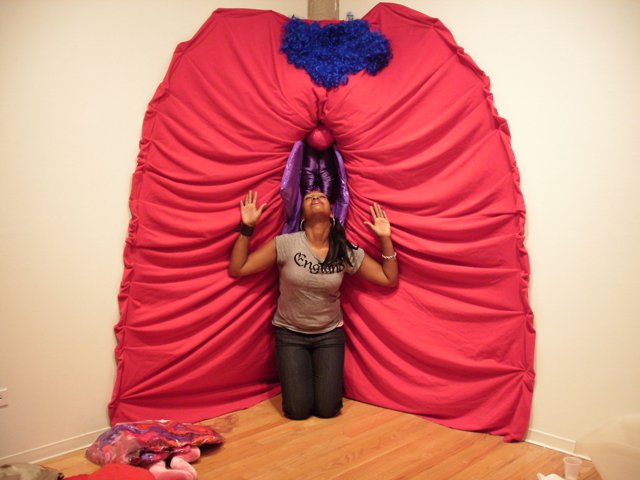
Constructa/Vulva, 2000, Image from http://cyberfeminism.net/constructavulva/

Biopower Unlimited! Image from http://cyberfeminism.net/biopower-unlimited/
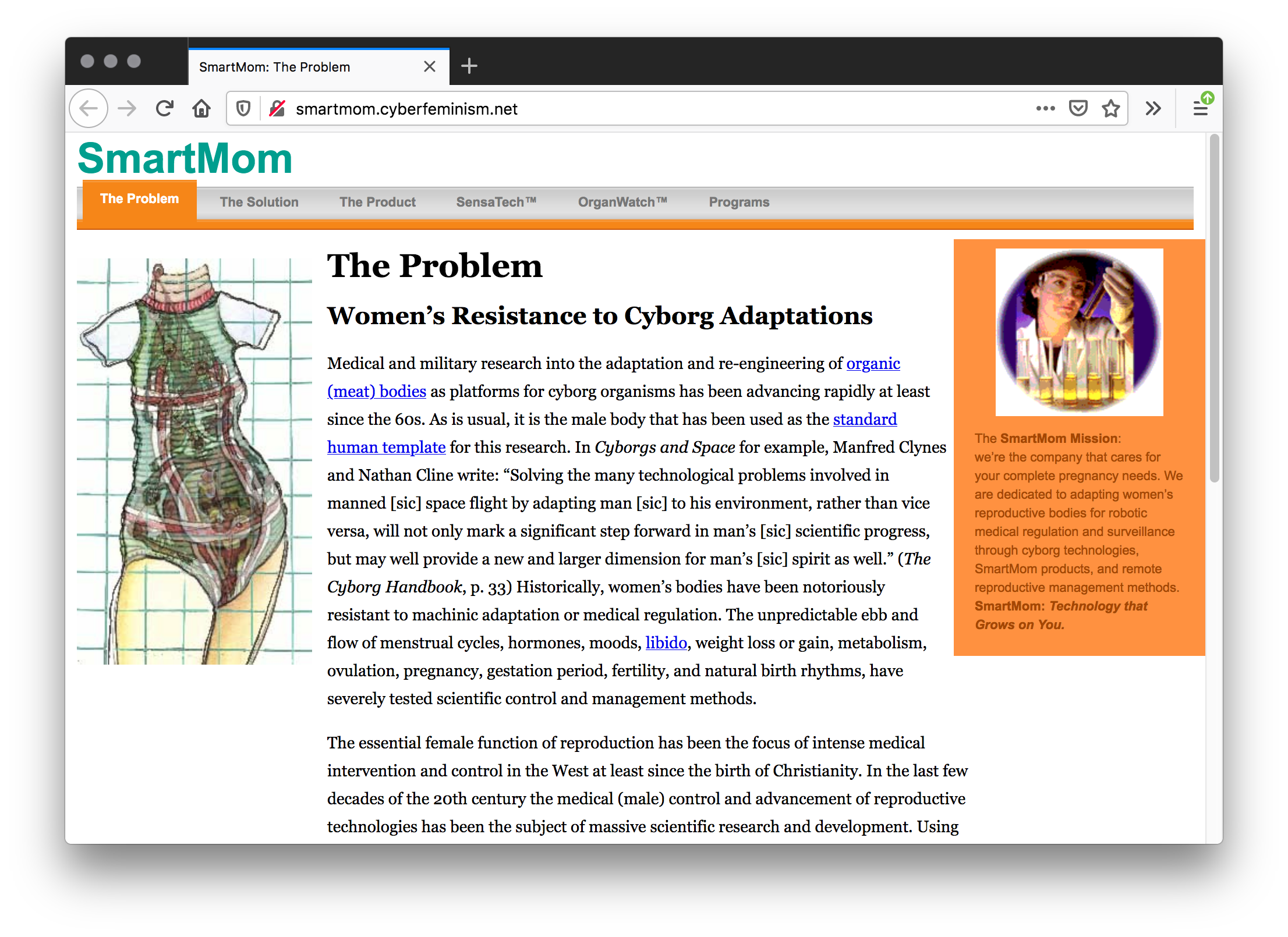
SmartMom, 1999, Screenshot, 2020, Firefox v76.0.1 on Mac OS 10.13.3; http://smartmom.cyberfeminism.net/

Artifact from http://smartmom.cyberfeminism.net/
subRosa asks: How can collective feminist organizational savvy, critical insights, and creative energy, be used to craft a Server with a new “operating system” that can re-connect us in mindful, collaborative, and pleasurable ways? What skills, imagination, experience, and resources do we all bring to the table? And how can we instigate active, nurturing, convivial being-in-common, both in the here where we live, and in ever-expanding global territories both virtual and embodied to which we are connected?
What are the politics of a Feminist Server? Can we hack the very concept of a “Server” to think differently about how the collective itself is a Server? […]
subRosa proposes that the Collective-as-Server can foment feminist struggle and practices in the public/virtual sphere, as well as in personal life. The Collective-as-Server can support solidarity and collective action, and make common cause with the many different struggles for environmental, economic, social and political justice.
1998, Laleh Mehran, Hyla Willis, Steffi Domike, Lucia Sommer, Faith Wilding and Christina N. Hung, http://cyberfeminism.net/; excerpt from subRosa, “Down with Self-Management! Re-Booting Ourselves as Feminist Servers,” September 27, 2014, http://cyberfeminism.net/down-with-self-management/
Pittsburgh and Providence
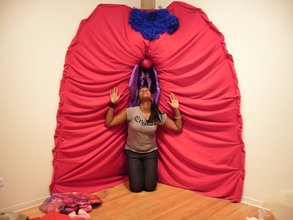
Constructa/Vulva, 2000, Image from http://cyberfeminism.net/constructavulva/

Biopower Unlimited! Image from http://cyberfeminism.net/biopower-unlimited/

SmartMom, 1999, Screenshot, 2020, Firefox v76.0.1 on Mac OS 10.13.3; http://smartmom.cyberfeminism.net/

Artifact from http://smartmom.cyberfeminism.net/
(139)
1998
DigitalBlood
Marjorie Franklin
DigitalBlood—written and directed by Marjorie Franklin, virtual machines by Paul Tompkins—is an interactive narrative on CD-ROM about mothers, babies and artificial life. It is also about emotional machines, love for one’s creations and the struggle for power in computer/human interactions and baby/mother relationships.
The narrative of DigitalBlood is experienced through a series of virtual machines that the visitor operates. The visitor is introduced to the narrator and the story out on a cold, windy plain at a drive-in movie theater. After the introduction to the story, the visitor (visually) sinks into the mud, falls to the first station in the story and has the opportunity to operate the first machine in order to see and hear the first stage of the story. After each machine is narrating its part of the story, the visitor sinks further to the next machine. After the narrative is finished, the visitor sinks further, then falls out of the sky into the drive-in movie again.
1998, Marjorie Franklin; excerpt from Leonardo On-Line: Words on Works, “Digital Blood,” https://www.leonardo.info/isast/wow/wow303/digital.html
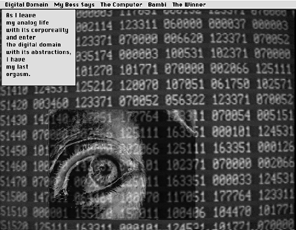
”Marjorie Franklin, introductory scene from Digital Blood, an interactive narrative on CD-ROM, 1997. (Virtual spaces and machines: Paul Tompkins. Poems: Alex Prisadsky.)” Image from https://www.leonardo.info/isast/wow/wow303/digital.html
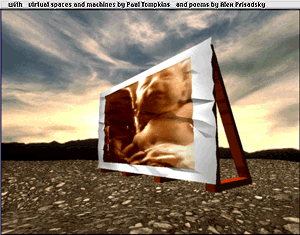
“Marjorie Franklin,Digital Blood, an interactive narrative on CD-ROM, 1997. As the narrative progresses, the menu bar often contains poems or bits of the story. (Virtual spaces and machines: Paul Tompkins. Poems: Alex Prisadsky.)” Image from https://www.leonardo.info/isast/wow/wow303/digital.html
DigitalBlood—written and directed by Marjorie Franklin, virtual machines by Paul Tompkins—is an interactive narrative on CD-ROM about mothers, babies and artificial life. It is also about emotional machines, love for one’s creations and the struggle for power in computer/human interactions and baby/mother relationships.
The narrative of DigitalBlood is experienced through a series of virtual machines that the visitor operates. The visitor is introduced to the narrator and the story out on a cold, windy plain at a drive-in movie theater. After the introduction to the story, the visitor (visually) sinks into the mud, falls to the first station in the story and has the opportunity to operate the first machine in order to see and hear the first stage of the story. After each machine is narrating its part of the story, the visitor sinks further to the next machine. After the narrative is finished, the visitor sinks further, then falls out of the sky into the drive-in movie again.
1998, Marjorie Franklin; excerpt from Leonardo On-Line: Words on Works, “Digital Blood,” https://www.leonardo.info/isast/wow/wow303/digital.html
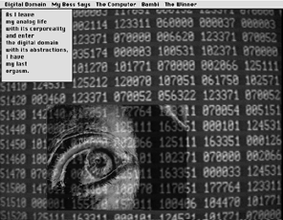
”Marjorie Franklin, introductory scene from Digital Blood, an interactive narrative on CD-ROM, 1997. (Virtual spaces and machines: Paul Tompkins. Poems: Alex Prisadsky.)” Image from https://www.leonardo.info/isast/wow/wow303/digital.html
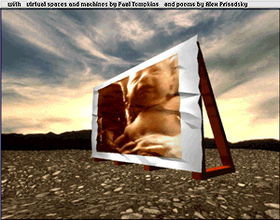
“Marjorie Franklin,Digital Blood, an interactive narrative on CD-ROM, 1997. As the narrative progresses, the menu bar often contains poems or bits of the story. (Virtual spaces and machines: Paul Tompkins. Poems: Alex Prisadsky.)” Image from https://www.leonardo.info/isast/wow/wow303/digital.html
(140)
1998
Cyberville: Clicks, Culture, and the Creation of an Online Town
Stacy Horn
Here’s how it works. You’ve got a computer. You can sit down to that computer, like I’m sitting here right now, and type in anything you like. It could be perfect garbage. I’ve been participating in an ongoing debate with a bunch of women about blow jobs—spit or swallow? Or it could be something terribly important like death. […] Next you stick a modem onto your computer, plug a phone line into that box, and your words are sent to a place where lots of people can see them. And respond. People all over the world. Or people typing a couple of hundred feet from you. […]
Even our bodies get into the act in cyberspace. Much as we might dearly love to sometimes, we can’t leave ourselves behind when we get online. Even when someone is just playing around or in disguise, something true is revealed, it is never completely invented. […] What is it about cyberspace? It conceals what gets in the way of revealing. No one’s right there.
1998, Stacy Horn (New York: Warner Books, 1998); excerpt p. 5
https://www.grandcentralpublishing.com/titles/stacy-horn/cyberville/9780446572064/
Here’s how it works. You’ve got a computer. You can sit down to that computer, like I’m sitting here right now, and type in anything you like. It could be perfect garbage. I’ve been participating in an ongoing debate with a bunch of women about blow jobs—spit or swallow? Or it could be something terribly important like death. […] Next you stick a modem onto your computer, plug a phone line into that box, and your words are sent to a place where lots of people can see them. And respond. People all over the world. Or people typing a couple of hundred feet from you. […]
Even our bodies get into the act in cyberspace. Much as we might dearly love to sometimes, we can’t leave ourselves behind when we get online. Even when someone is just playing around or in disguise, something true is revealed, it is never completely invented. […] What is it about cyberspace? It conceals what gets in the way of revealing. No one’s right there.
1998, Stacy Horn (New York: Warner Books, 1998); excerpt p. 5
https://www.grandcentralpublishing.com/titles/stacy-horn/cyberville/9780446572064/
(141)
1998
Cybergrrl! A Woman’s Guide to the World Wide Web
Aliza Sherman
You’re here! That means you’ve at least started to discover life online. But if you still are in the dark about a lot of what’s going on here … or you know someone who still thinks the Internet and the World Wide Web are too hard, too expensive, and too dangerous then Aliza Sherman (aka Cybergrrl) can help. In language free of technical jargon, she answers your most perplexing questions. From simple concepts to complicated functions, this unique book tells you exactly how to go online without hassle or confusion. Inside you’ll discover:
…The difference between the Web and the Internet
…Easy ways to get online that don’t cost a fortune
…Real stories of how the Internet has changed women’s lives
…Great career and business opportunities available on the Net
…Valuable resources online about health, family, and home
…The proper way to chat online and what posting means
…The truth about online stalking, harassment, and pornography
Open up your mind to the possibilities that going online can bring to you at your job, your home, and in your everyday life. Let the Cybergrrl show you how easy it is to get online and how to get the most out of being there!
1998, Aliza Sherman (Cybergrrl) (New York: Ballantine Books, 1998); excerpt from Ballantine Books
https://www.worldcat.org/title/cybergrrl-a-womans-guide-to-the-world-wide-web/oclc/38418008
You’re here! That means you’ve at least started to discover life online. But if you still are in the dark about a lot of what’s going on here … or you know someone who still thinks the Internet and the World Wide Web are too hard, too expensive, and too dangerous then Aliza Sherman (aka Cybergrrl) can help. In language free of technical jargon, she answers your most perplexing questions. From simple concepts to complicated functions, this unique book tells you exactly how to go online without hassle or confusion. Inside you’ll discover:
…The difference between the Web and the Internet
…Easy ways to get online that don’t cost a fortune
…Real stories of how the Internet has changed women’s lives
…Great career and business opportunities available on the Net
…Valuable resources online about health, family, and home
…The proper way to chat online and what posting means
…The truth about online stalking, harassment, and pornography
Open up your mind to the possibilities that going online can bring to you at your job, your home, and in your everyday life. Let the Cybergrrl show you how easy it is to get online and how to get the most out of being there!
1998, Aliza Sherman (Cybergrrl) (New York: Ballantine Books, 1998); excerpt from Ballantine Books
https://www.worldcat.org/title/cybergrrl-a-womans-guide-to-the-world-wide-web/oclc/38418008
(142)
1998
Notes on the Political Condition of Cyberfeminism
Faith Wilding, Critical Art Ensemble
Through the work of numerous Netactive women, there is now a distinct cyberfeminist Netpresence that is fresh, brash, smart, and iconoclastic of many of the tenets of classical feminism. At the same time, cyberfeminism has only taken its first steps in contesting technologically complex territories, […] overcoded to a mythic degree as a male domain. Consequently, cyberfeminist incursion into various technoworlds (CD-ROM production, Web works, lists and news groups, artificial intelligence, etc.) has been largely nomadic, spontaneous, and anarchic. On the one hand, these qualities have allowed maximum freedom for […] the beginnings of various written and artistic genres. On the other, […] theoretical issues of gender regarding the techno-social are immature relative to their development in spaces of greater gender equity won through struggle. Given such conditions, some feminist strategies and tactics will repeat themselves as women attempt to establish a foothold in a territory traditionally denied to them. […] Cyberspace is a crucial point of gender struggle that is desperately in need of gender diversification (and diversity in general).
1998, Faith Wilding and Critical Art Ensemble, Art Journal 57, no. 2 (1998): pp. 47–60; excerpt p. 47
https://www.obn.org/cfundef/condition.html
Through the work of numerous Netactive women, there is now a distinct cyberfeminist Netpresence that is fresh, brash, smart, and iconoclastic of many of the tenets of classical feminism. At the same time, cyberfeminism has only taken its first steps in contesting technologically complex territories, […] overcoded to a mythic degree as a male domain. Consequently, cyberfeminist incursion into various technoworlds (CD-ROM production, Web works, lists and news groups, artificial intelligence, etc.) has been largely nomadic, spontaneous, and anarchic. On the one hand, these qualities have allowed maximum freedom for […] the beginnings of various written and artistic genres. On the other, […] theoretical issues of gender regarding the techno-social are immature relative to their development in spaces of greater gender equity won through struggle. Given such conditions, some feminist strategies and tactics will repeat themselves as women attempt to establish a foothold in a territory traditionally denied to them. […] Cyberspace is a crucial point of gender struggle that is desperately in need of gender diversification (and diversity in general).
1998, Faith Wilding and Critical Art Ensemble, Art Journal 57, no. 2 (1998): pp. 47–60; excerpt p. 47
https://www.obn.org/cfundef/condition.html
(143)
1998
Bridging the digital divide: The impact of race on computer access and Internet use
Donna Hoffman, Thomas Novack
“The differences between Whites and African Americans in the United States with respect to computer access, which is the current prerequisite for Internet access and World Wide Web use, were studied. The question was whether observed race differences in access and use can be accounted for by differences in income and education, how access impacts use, and when race matters in the calculation of equal access. Whites are more likely than African Americans to have a computer in their homes (44.2% compared to 29.0%), but African Americans are more likely to state that they would like to acquire access to a computer. Whites are more likely to have used the Web (26% versus 22%). Increasing levels of household income corresponding to increased likelihood of owning a home computer, regardless of race. Increasing levels of education correspond to an increased likelihood of work computer access, regardless of race. People who owned a home computer and had access to a work computer were much more likely than others to have used the World Wide Web in the past 6 months. When students are considered, race almost always makes a difference. White students lacking a home computer, but not African American students, appear to find an alternative means of accessing the Internet. These results have certain implications for policy with regard to computer access. African American students need multiple points of computer access. To ensure the participation of African Americans in the information revolution, it is critical to improve the educational opportunities of African Americans. Results also indicate that if access is ensured, use will follow.” —Donna Hoffman and Thomas Novack, excerpt
https://www.are.na/block/7651091
“The differences between Whites and African Americans in the United States with respect to computer access, which is the current prerequisite for Internet access and World Wide Web use, were studied. The question was whether observed race differences in access and use can be accounted for by differences in income and education, how access impacts use, and when race matters in the calculation of equal access. Whites are more likely than African Americans to have a computer in their homes (44.2% compared to 29.0%), but African Americans are more likely to state that they would like to acquire access to a computer. Whites are more likely to have used the Web (26% versus 22%). Increasing levels of household income corresponding to increased likelihood of owning a home computer, regardless of race. Increasing levels of education correspond to an increased likelihood of work computer access, regardless of race. People who owned a home computer and had access to a work computer were much more likely than others to have used the World Wide Web in the past 6 months. When students are considered, race almost always makes a difference. White students lacking a home computer, but not African American students, appear to find an alternative means of accessing the Internet. These results have certain implications for policy with regard to computer access. African American students need multiple points of computer access. To ensure the participation of African Americans in the information revolution, it is critical to improve the educational opportunities of African Americans. Results also indicate that if access is ensured, use will follow.” —Donna Hoffman and Thomas Novack, excerpt
https://www.are.na/block/7651091
(144)
1998
Digital, Human, Animal, Plant: The Politics of Cyberfeminism?
Susanna Paasonen
Cyberfeminism can be defined as sets of activities which take over information technologies both on a conceptual and practical level. […] Sadie Plant, a British writer based at Warwick University, has gained recognition as one of the best-known theorists of cyberfeminism particularly through her recent monograph Zeros + Ones: Digital Women + The New Technoculture (1997). Cyberfeminism, as defined by Plant, is an insurrection on the part of the goods and materials of the patriarchal world, a dispersed, distributed emergence composed of links between women, women and computers, computers and communication links,connections and connectionist nets. The key function of clitoris and the mission of disrupting the symbolic order from within (from masculine design and network solutions) is typified by the female artists’ group VNS Matrix’s Cyberfeminist Manifesto for the 21st century and by their later work, which are for Plant both signs and proof of cyberfeminism overtaking the Net.
1998, Susanna Paasonen, in “Women and New Media,” ed. Kate Deepwell, special issue, n.paradoxa; international feminist art journal 2 (July 1998): pp. 16–22; excerpt p. 16
https://www.are.na/block/7713661
Cyberfeminism can be defined as sets of activities which take over information technologies both on a conceptual and practical level. […] Sadie Plant, a British writer based at Warwick University, has gained recognition as one of the best-known theorists of cyberfeminism particularly through her recent monograph Zeros + Ones: Digital Women + The New Technoculture (1997). Cyberfeminism, as defined by Plant, is an insurrection on the part of the goods and materials of the patriarchal world, a dispersed, distributed emergence composed of links between women, women and computers, computers and communication links,connections and connectionist nets. The key function of clitoris and the mission of disrupting the symbolic order from within (from masculine design and network solutions) is typified by the female artists’ group VNS Matrix’s Cyberfeminist Manifesto for the 21st century and by their later work, which are for Plant both signs and proof of cyberfeminism overtaking the Net.
1998, Susanna Paasonen, in “Women and New Media,” ed. Kate Deepwell, special issue, n.paradoxa; international feminist art journal 2 (July 1998): pp. 16–22; excerpt p. 16
https://www.are.na/block/7713661
(145)
1998
forever doll
GashGirl
“she is everything and nothing” — GashGirl [page "GashGirl [doll yoko]" not found]
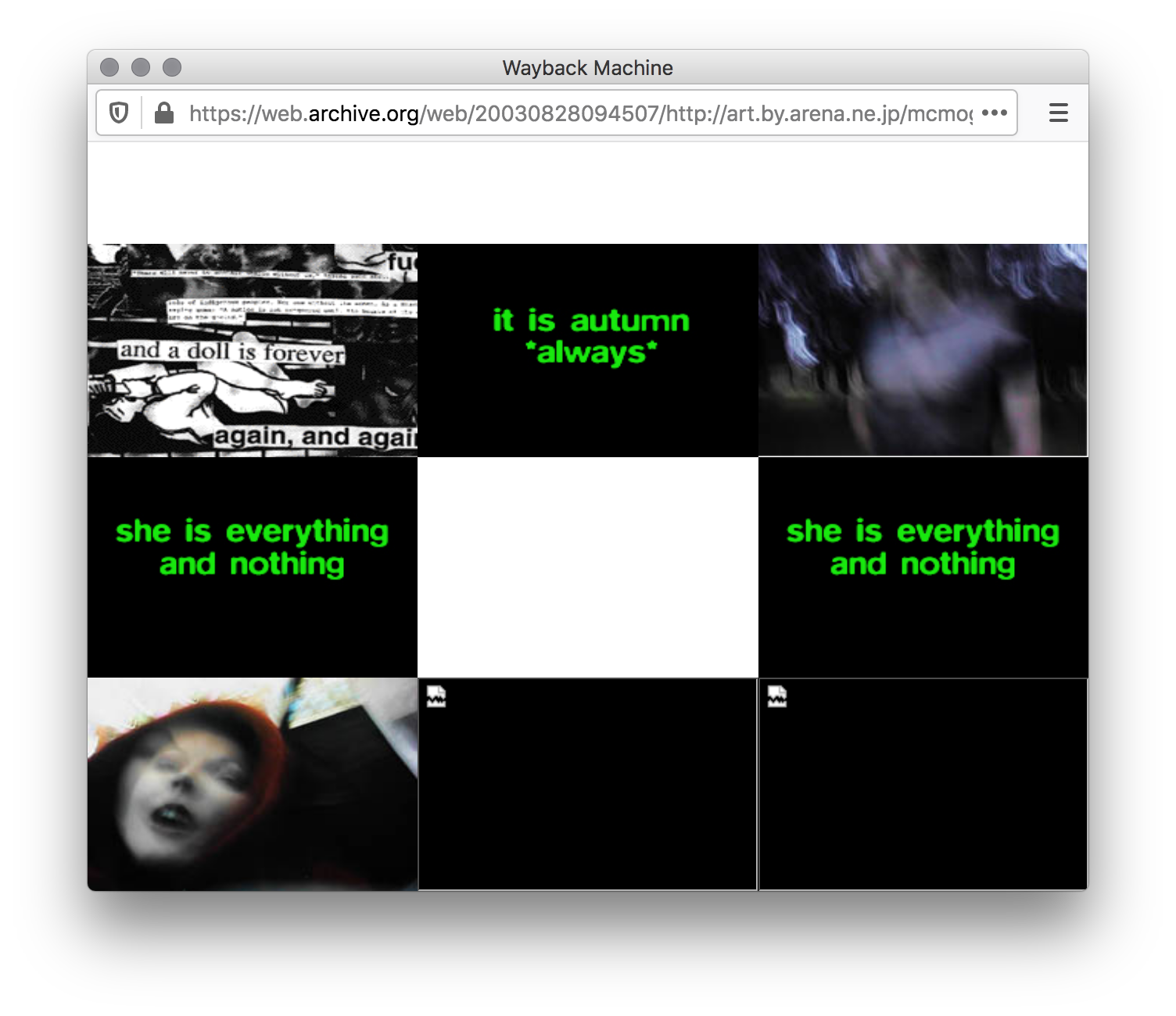
Wayback Machine, August 28, 2003; Screenshot, 2020, Firefox v76.0.1 on Mac OS 10.13.3; https://web.archive.org/web/20030828094507/http://art.by.arena.ne.jp/mcmogatk/1998/us14nhkpper/index.html
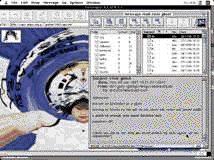
artifact from Wayback Machine, August 28, 2003, https://web.archive.org/web/20030828094507/http://art.by.arena.ne.jp/mcmogatk/1998/us14nhkpper/index.html
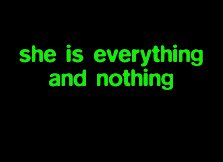
artifact from Wayback Machine, August 28, 2003, https://web.archive.org/web/20030828094507/http://art.by.arena.ne.jp/mcmogatk/1998/us14nhkpper/index.html

Wayback Machine, December 4, 2003; Screenshot, 2020, Firefox v76.0.1 on Mac OS 10.13.3; https://web.archive.org/web/20031204101645/http://art.by.arena.ne.jp/mcmogatk/1998/us14nhkpper/aya.htm
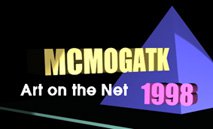
artifact from Wayback Machine, August 28, 2003, https://web.archive.org/web/20031204101645/http://art.by.arena.ne.jp/mcmogatk/1998/us14nhkpper/aya.htm

artifact from Wayback Machine, August 28, 2003, https://web.archive.org/web/20031204101645/http://art.by.arena.ne.jp/mcmogatk/1998/us14nhkpper/aya.htm

artifact from Wayback Machine, August 28, 2003, https://web.archive.org/web/20031204101645/http://art.by.arena.ne.jp/mcmogatk/1998/us14nhkpper/aya.htm

artifact from Wayback Machine, August 28, 2003, https://web.archive.org/web/20031204101645/http://art.by.arena.ne.jp/mcmogatk/1998/us14nhkpper/aya.htm
“she is everything and nothing” — GashGirl [page "GashGirl [doll yoko]" not found]
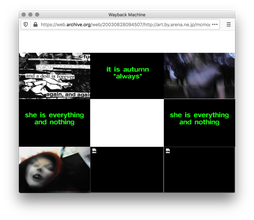
Wayback Machine, August 28, 2003; Screenshot, 2020, Firefox v76.0.1 on Mac OS 10.13.3; https://web.archive.org/web/20030828094507/http://art.by.arena.ne.jp/mcmogatk/1998/us14nhkpper/index.html
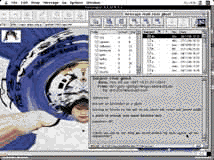
artifact from Wayback Machine, August 28, 2003, https://web.archive.org/web/20030828094507/http://art.by.arena.ne.jp/mcmogatk/1998/us14nhkpper/index.html
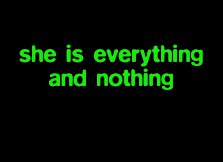
artifact from Wayback Machine, August 28, 2003, https://web.archive.org/web/20030828094507/http://art.by.arena.ne.jp/mcmogatk/1998/us14nhkpper/index.html
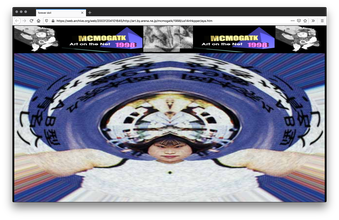
Wayback Machine, December 4, 2003; Screenshot, 2020, Firefox v76.0.1 on Mac OS 10.13.3; https://web.archive.org/web/20031204101645/http://art.by.arena.ne.jp/mcmogatk/1998/us14nhkpper/aya.htm

artifact from Wayback Machine, August 28, 2003, https://web.archive.org/web/20031204101645/http://art.by.arena.ne.jp/mcmogatk/1998/us14nhkpper/aya.htm

artifact from Wayback Machine, August 28, 2003, https://web.archive.org/web/20031204101645/http://art.by.arena.ne.jp/mcmogatk/1998/us14nhkpper/aya.htm

artifact from Wayback Machine, August 28, 2003, https://web.archive.org/web/20031204101645/http://art.by.arena.ne.jp/mcmogatk/1998/us14nhkpper/aya.htm

artifact from Wayback Machine, August 28, 2003, https://web.archive.org/web/20031204101645/http://art.by.arena.ne.jp/mcmogatk/1998/us14nhkpper/aya.htm
(146)
1998
A Report on Cyberfeminism: Sadie Plant Relative to VNS Matrix
Alex Galloway
It would be hasty to dismiss Sadie Plant’s recent book, Zeros and Ones, as being totally second-wave feminism. True, she seems quite interested in the deep, dark, technological feminine; she speaks of the male Ones and their binary opposites, the female Zeros; and she manages to weave together a genuine her-story of technology. Yet, she also reaches beyond these constraints into a complex relationship between women and machines. This relationship, tied up in problematics surrounding identity, technology and the body, is at the heart of the contemporary movement called cyberfeminism. […]
Despite international recognition, cyberfeminism remains a highly problematic theoretical framework. No one is quite sure what it means. Its leaders, when they are not abandoning the movement all together, have often given less than inspired readings of political and technological issues. Because of this cyberfeminism remains a bit disappointing as avant-garde political movements go. […] That said, the emerging cyber culture has certainly produced a need for cyberfeminism.
1998, Alexander Galloway, Switch Journal 9, June 14, 1998, https://vnsmatrix.net/publications/a-report-on-cyberfeminism
https://web.archive.org/web/20031231152735/http://switch.sjsu.edu/web/v4n1/alex.html
It would be hasty to dismiss Sadie Plant’s recent book, Zeros and Ones, as being totally second-wave feminism. True, she seems quite interested in the deep, dark, technological feminine; she speaks of the male Ones and their binary opposites, the female Zeros; and she manages to weave together a genuine her-story of technology. Yet, she also reaches beyond these constraints into a complex relationship between women and machines. This relationship, tied up in problematics surrounding identity, technology and the body, is at the heart of the contemporary movement called cyberfeminism. […]
Despite international recognition, cyberfeminism remains a highly problematic theoretical framework. No one is quite sure what it means. Its leaders, when they are not abandoning the movement all together, have often given less than inspired readings of political and technological issues. Because of this cyberfeminism remains a bit disappointing as avant-garde political movements go. […] That said, the emerging cyber culture has certainly produced a need for cyberfeminism.
1998, Alexander Galloway, Switch Journal 9, June 14, 1998, https://vnsmatrix.net/publications/a-report-on-cyberfeminism
https://web.archive.org/web/20031231152735/http://switch.sjsu.edu/web/v4n1/alex.html
(147)
1998
Attack of the CyberFeminists
Mary-Anne Breeze
This template of the machismo cyberjock completing their own version of the traditional hero’s journey narrative is one that cyberfeminists object to, and combat within their own art practices. […] This image of “jacking into the matrix” represents all that is phallocentric and patriarchal in the use of technologies in relation to the shared collective creation of cyberspace. […]
Cyberfeminist practice offers a way of constructing a space within the dominant confines of computer culture—one that celebrates organic creation and non-narrative, often non-linear writing and art practices. One such group of cyberfeminists that have been active in the role of offering one version of this alternative viewpoint in both their artwork and general online practice is VNS Matrix. […] They set out to explore and “infect” certain overarching patriarchal notions of narrative and structure through the use of viral symbology, and believe that “… women who hijack the tools of domination and control introduce a rupture into highly systematized culture by infecting the machines with radical thought, diverting them from their inherent purpose of linear topdown mastery.”
1998, Mary-Anne Breeze (Mez Breeze), https://web.archive.org/web/20031222153303/http://switch.sjsu.edu/web/v4n1/art_mez.html
This template of the machismo cyberjock completing their own version of the traditional hero’s journey narrative is one that cyberfeminists object to, and combat within their own art practices. […] This image of “jacking into the matrix” represents all that is phallocentric and patriarchal in the use of technologies in relation to the shared collective creation of cyberspace. […]
Cyberfeminist practice offers a way of constructing a space within the dominant confines of computer culture—one that celebrates organic creation and non-narrative, often non-linear writing and art practices. One such group of cyberfeminists that have been active in the role of offering one version of this alternative viewpoint in both their artwork and general online practice is VNS Matrix. […] They set out to explore and “infect” certain overarching patriarchal notions of narrative and structure through the use of viral symbology, and believe that “… women who hijack the tools of domination and control introduce a rupture into highly systematized culture by infecting the machines with radical thought, diverting them from their inherent purpose of linear topdown mastery.”
1998, Mary-Anne Breeze (Mez Breeze), https://web.archive.org/web/20031222153303/http://switch.sjsu.edu/web/v4n1/art_mez.html
(148)
1998
Queen Bees and the Hum of the Hive: An Overview of Feminist Hypertext’s Subversive Honeycombings
Carolyn Guertin
Lesbian author and theorist Nicole Brossard says, “To write now and in the year 2000 means: to write what has never before been thought in the history of Man’s memory.” She sees the revolutionary change that Western society and media is undergoing as a birth of new metaphors connected with gender and with the computer. This is a spatial change integrally connected to the senses, to women and to women’s discourse. As a part of this, she sees narrative form—since it is constructed, it is inherently “technological”—undergoing an evolution and, “if,” she says, “there is a term for fiction, it surely has yet to be invented.” Women have always been at the forefront of the development of fictional forms and now they are combining those forms with hypertext and with a wide variety of political discourses in radical ways.
1998, Carolyn Guertin, http://beehive.temporalimage.com/content_maps/12a.html
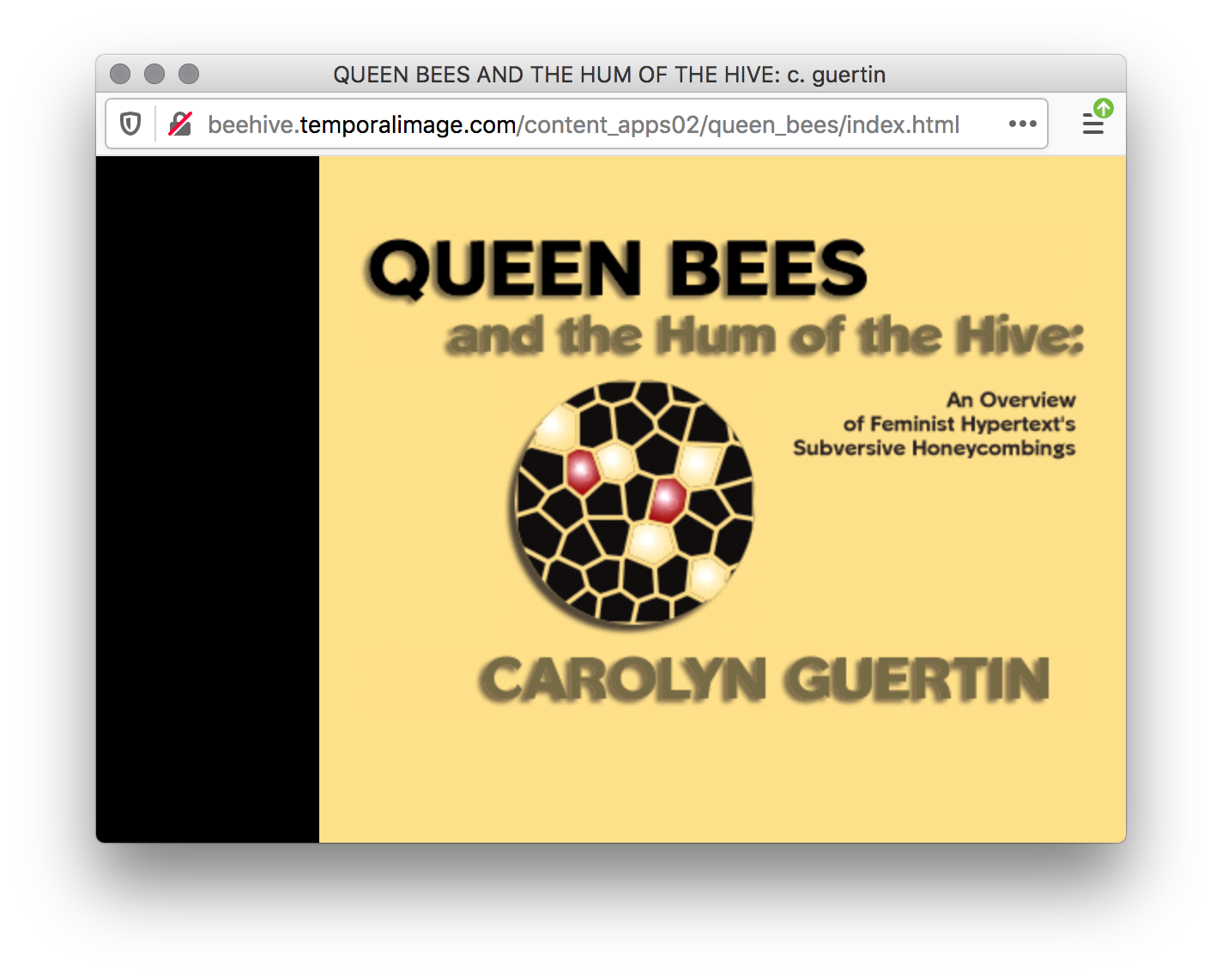
Screenshot, 2020, Firefox v76.0.1 on Mac OS 10.13.3; http://beehive.temporalimage.com/content_apps02/queen_bees/index.html
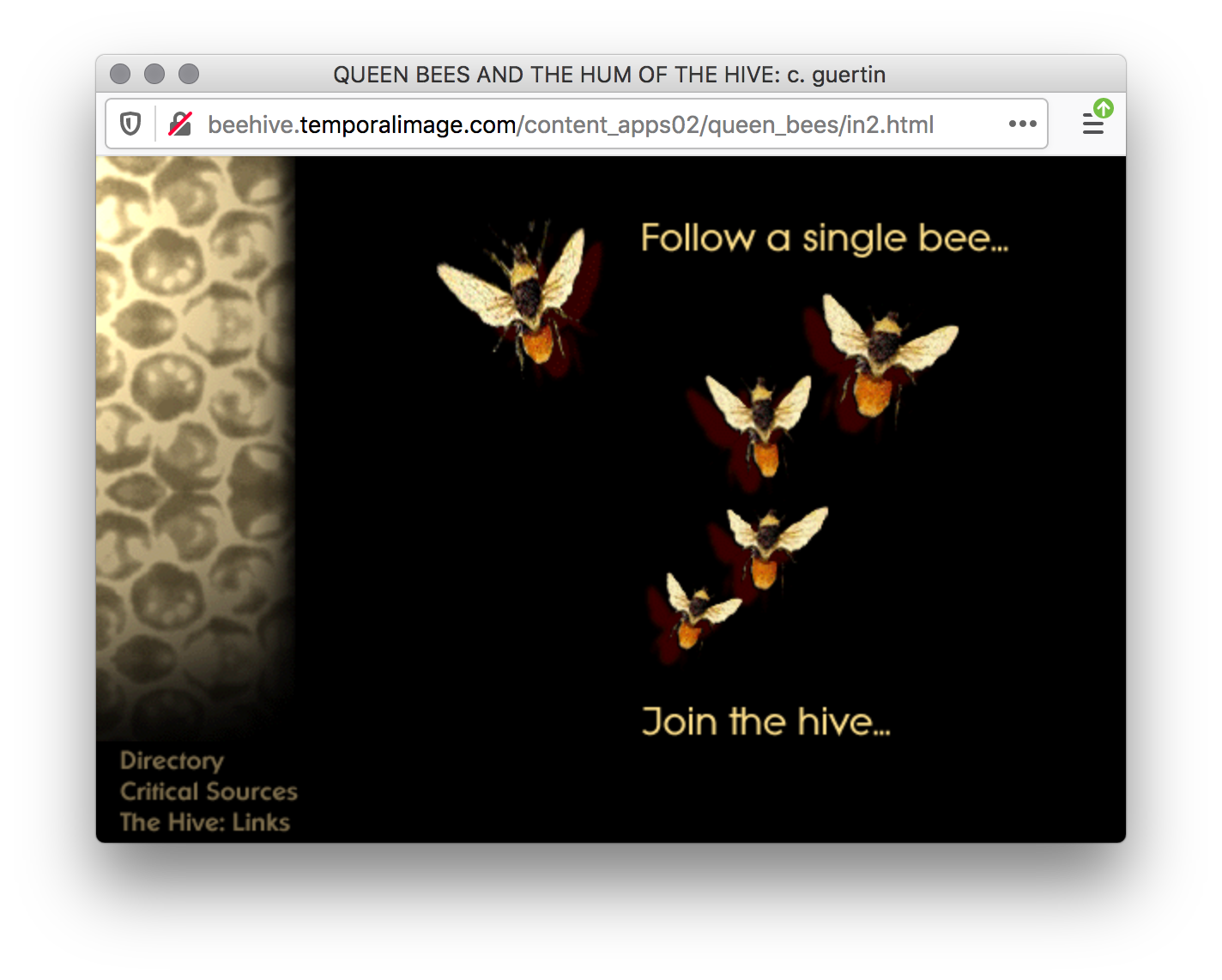
Screenshot, 2020, Firefox v76.0.1 on Mac OS 10.13.3; http://beehive.temporalimage.com/content_apps02/queen_bees/in2.html
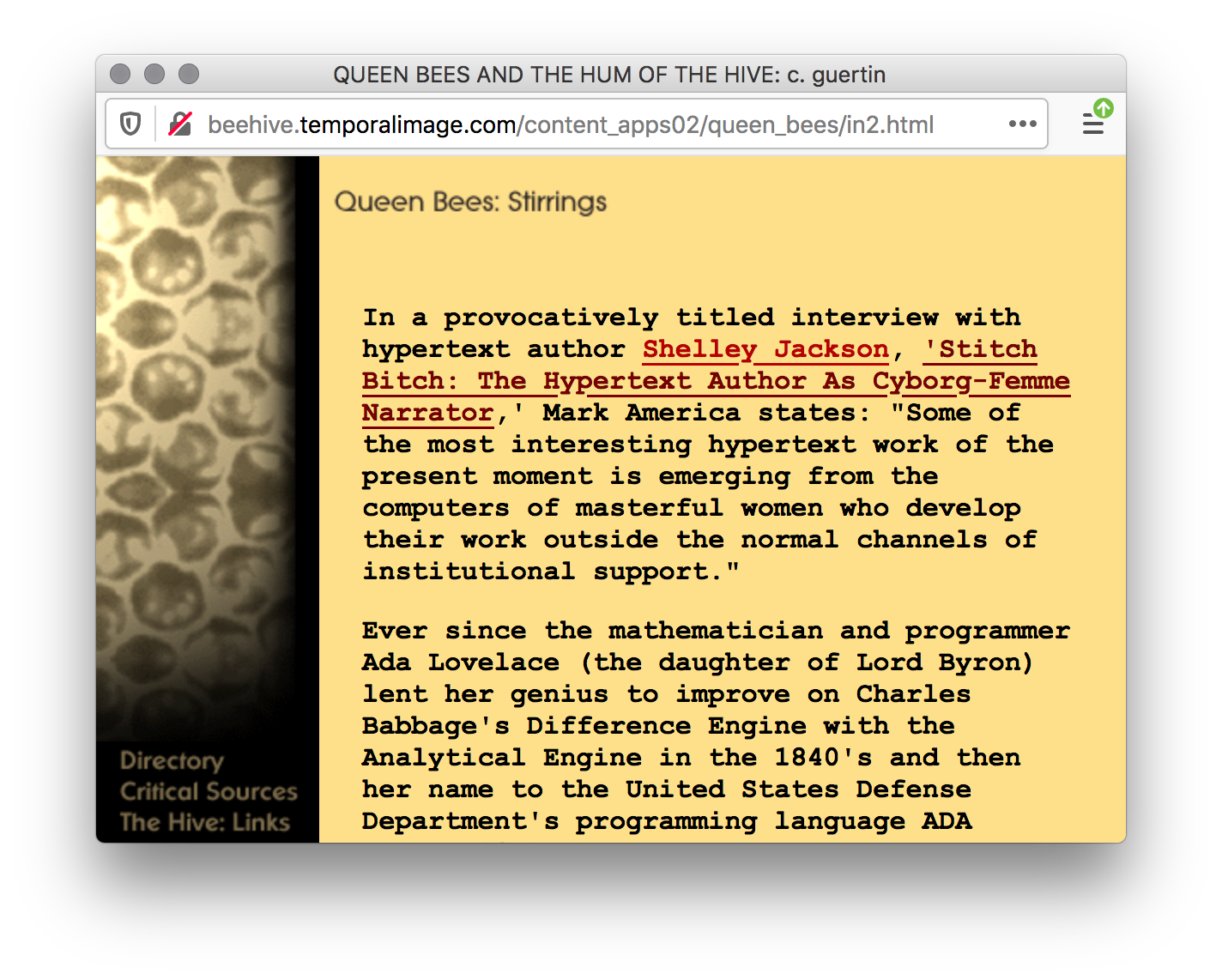
“Queen Bees: Stirrings,” Screenshot, 2020, Firefox v76.0.1 on Mac OS 10.13.3; http://beehive.temporalimage.com/content_apps02/queen_bees/in2.html
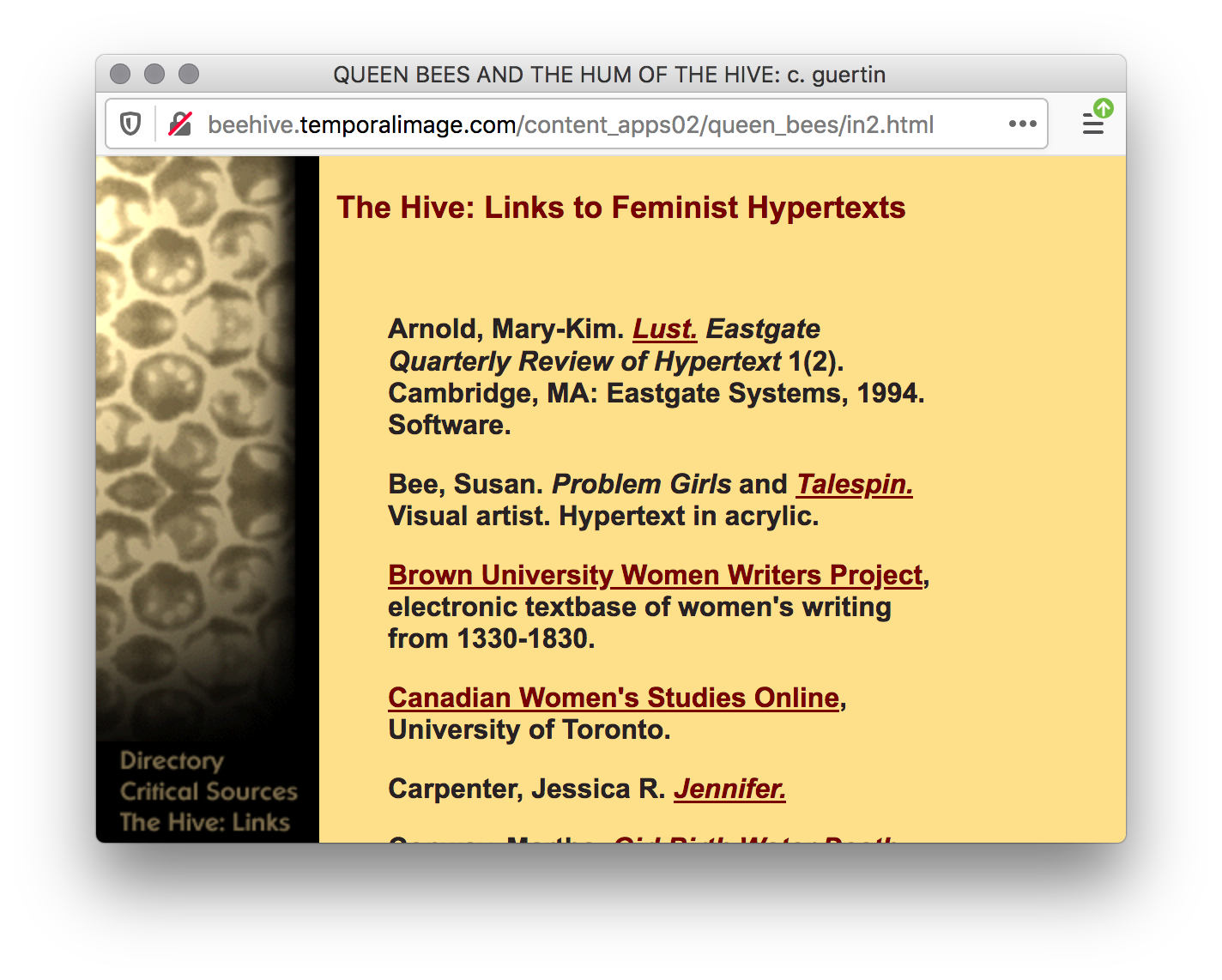
“The Hive: Links to Feminist Hypertexts,” Screenshot, 2020, Firefox v76.0.1 on Mac OS 10.13.3; http://beehive.temporalimage.com/content_apps02/queen_bees/in2.html
Lesbian author and theorist Nicole Brossard says, “To write now and in the year 2000 means: to write what has never before been thought in the history of Man’s memory.” She sees the revolutionary change that Western society and media is undergoing as a birth of new metaphors connected with gender and with the computer. This is a spatial change integrally connected to the senses, to women and to women’s discourse. As a part of this, she sees narrative form—since it is constructed, it is inherently “technological”—undergoing an evolution and, “if,” she says, “there is a term for fiction, it surely has yet to be invented.” Women have always been at the forefront of the development of fictional forms and now they are combining those forms with hypertext and with a wide variety of political discourses in radical ways.
1998, Carolyn Guertin, http://beehive.temporalimage.com/content_maps/12a.html
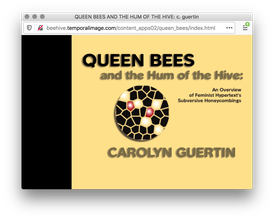
Screenshot, 2020, Firefox v76.0.1 on Mac OS 10.13.3; http://beehive.temporalimage.com/content_apps02/queen_bees/index.html
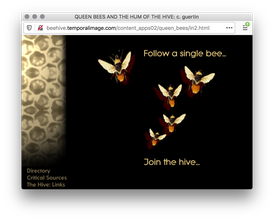
Screenshot, 2020, Firefox v76.0.1 on Mac OS 10.13.3; http://beehive.temporalimage.com/content_apps02/queen_bees/in2.html
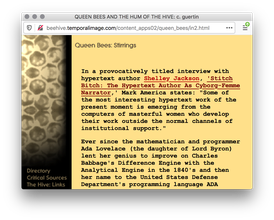
“Queen Bees: Stirrings,” Screenshot, 2020, Firefox v76.0.1 on Mac OS 10.13.3; http://beehive.temporalimage.com/content_apps02/queen_bees/in2.html

“The Hive: Links to Feminist Hypertexts,” Screenshot, 2020, Firefox v76.0.1 on Mac OS 10.13.3; http://beehive.temporalimage.com/content_apps02/queen_bees/in2.html
(149)
1998
Four Stories
Jen Meagher
One of the women who participated in the 4 Stories project, found a similar relief in logging on to the Internet at the New York Public Library. “It saved my life at one point … I was feeling very, very bad … I was getting beat up, and I couldn’t think straight. I said, ‘I’ve been down this road before, why am I here again?’ So I went [online] and I looked around.”
As she explained, the reason she went to the Internet was safety. While online, she was anonymous, and she could say whatever she wanted to say. She could also look for help and information. For her, the Internet was a first step before going to Victim Services.
1998, Jen Meagher, http://turbulence.org/Works/fourstories/home.html
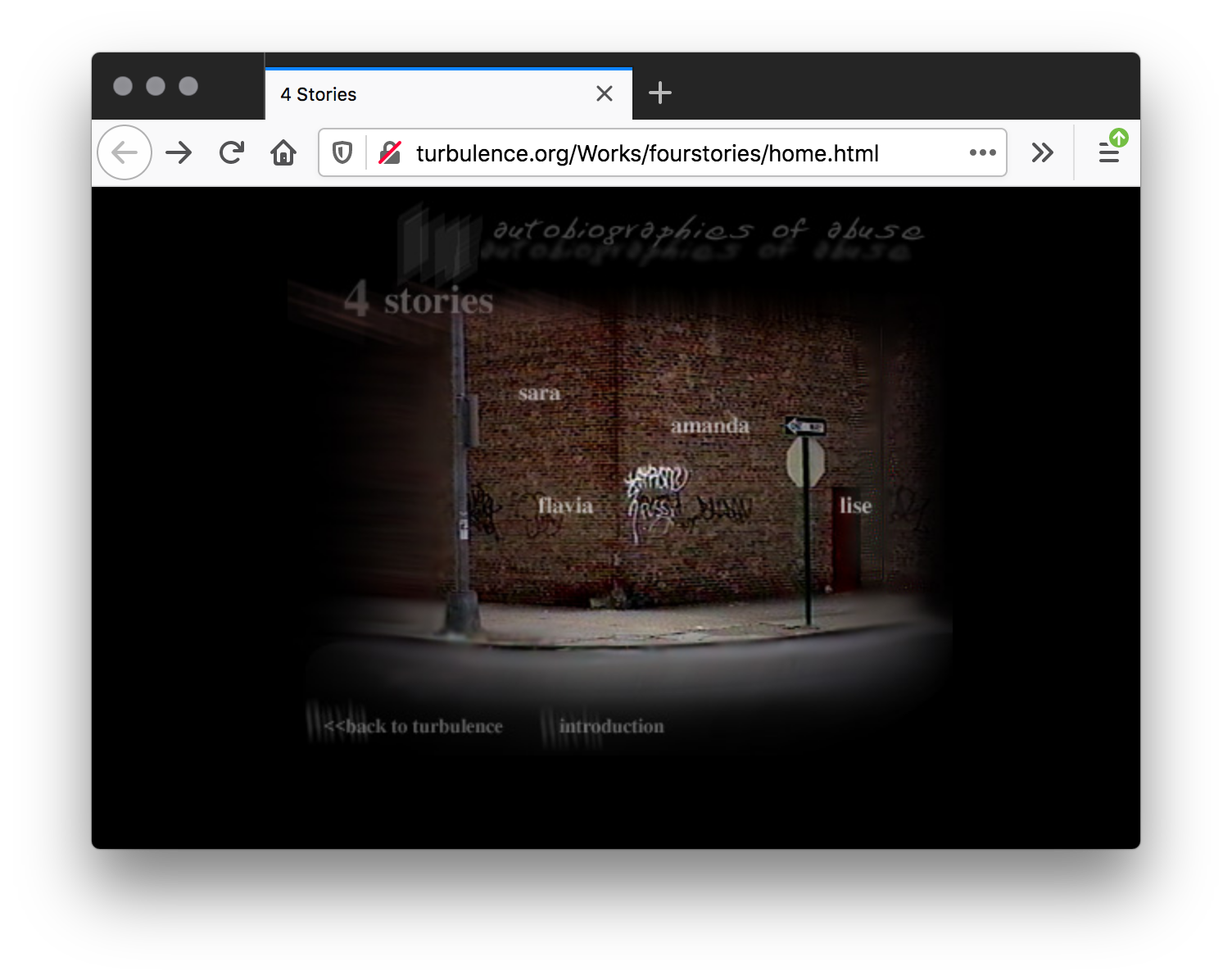
Screenshot, 2020, Firefox v76.0.1 on Mac OS 10.13.3; http://turbulence.org/Works/fourstories/home.html
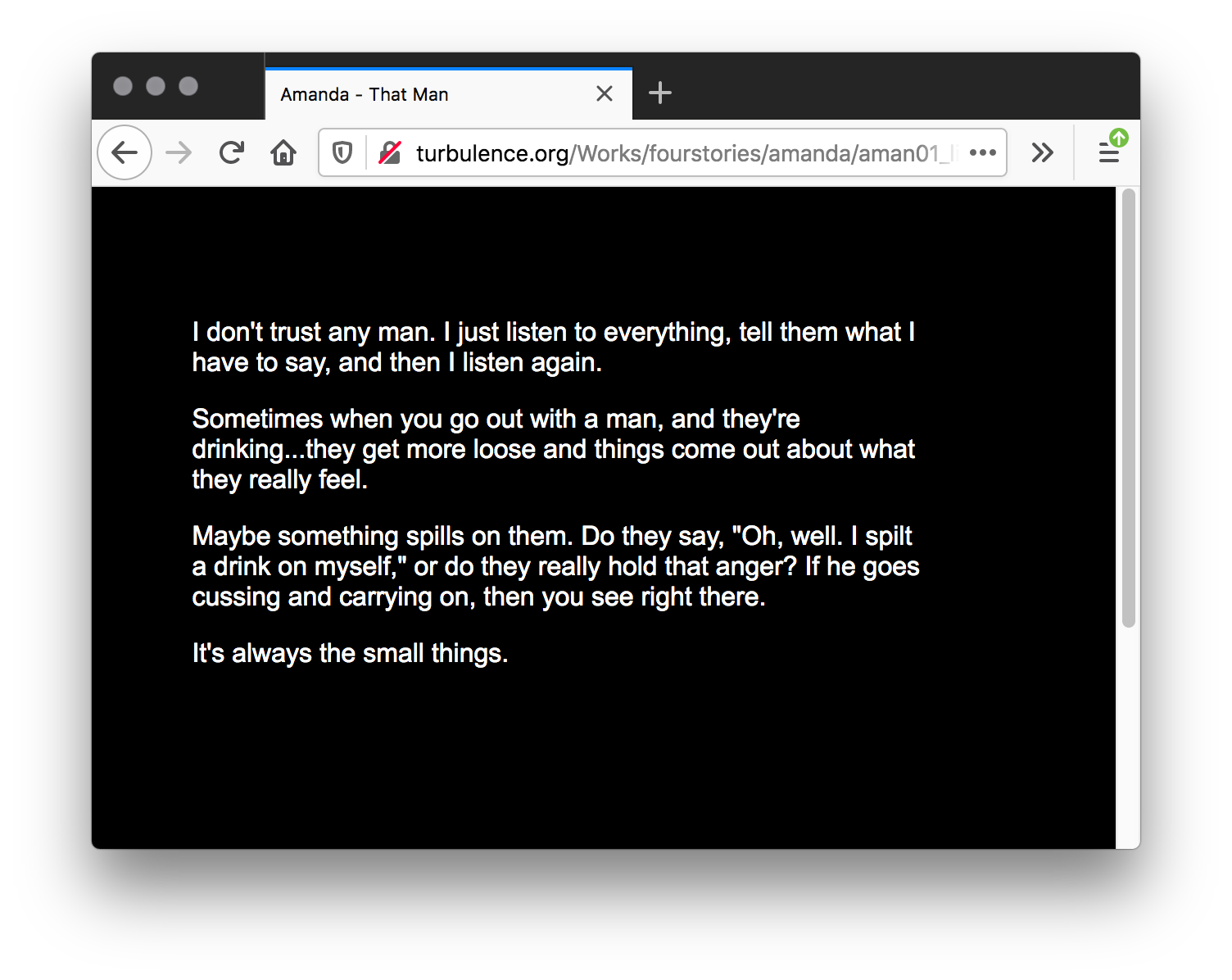
“Amanda,” Screenshot, 2020, Firefox v76.0.1 on Mac OS 10.13.3; http://fray.com/hope/touched/index.html

“Flavia,” Screenshot, 2020, Firefox v76.0.1 on Mac OS 10.13.3; http://turbulence.org/Works/fourstories/amanda/aman01_listen.html
One of the women who participated in the 4 Stories project, found a similar relief in logging on to the Internet at the New York Public Library. “It saved my life at one point … I was feeling very, very bad … I was getting beat up, and I couldn’t think straight. I said, ‘I’ve been down this road before, why am I here again?’ So I went [online] and I looked around.”
As she explained, the reason she went to the Internet was safety. While online, she was anonymous, and she could say whatever she wanted to say. She could also look for help and information. For her, the Internet was a first step before going to Victim Services.
1998, Jen Meagher, http://turbulence.org/Works/fourstories/home.html
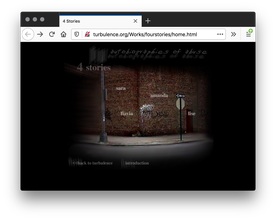
Screenshot, 2020, Firefox v76.0.1 on Mac OS 10.13.3; http://turbulence.org/Works/fourstories/home.html
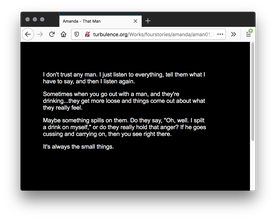
“Amanda,” Screenshot, 2020, Firefox v76.0.1 on Mac OS 10.13.3; http://fray.com/hope/touched/index.html
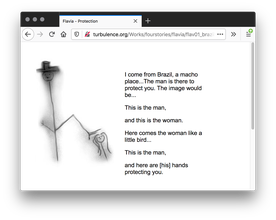
“Flavia,” Screenshot, 2020, Firefox v76.0.1 on Mac OS 10.13.3; http://turbulence.org/Works/fourstories/amanda/aman01_listen.html
(150)
1998
Women’sNet
Anriette Esterhuysen, Colleen Lowe Morna
The goal of Women’sNet is to empower South African women to use cyberspace as a tool for information and mobilization towards advancing women’s equality. We aim to demystify information and communications technologies (ICTs) and make these accessible to all women, particularly those who have been historically disadvantaged in terms of their access to such technologies.
This will be achieved through the development and implementation of appropriate gender-sensitive training programmes and ongoing support for women using the technology. The Women’sNet initiative also defines a strategy for creating a dynamic source of locally generated information and discussion on women’s development in South Africa.
1998, Anriette Esterhuysen and Colleen Lowe Morna, https://web.archive.org/web/20010713024317/http://womensnet.org.za:80/; excerpt from “Women’sNet Brainstorming Workshop Report,” https://web.archive.org/web/19991010130612/http://womensnet.org.za/about/workshop.htm
South Africa

Wayback Machine, July 13, 2001; Screenshot, 2020, Firefox v76.0.1 on Mac OS 10.13.3; https://web.archive.org/web/20010713024317/http://womensnet.org.za:80/
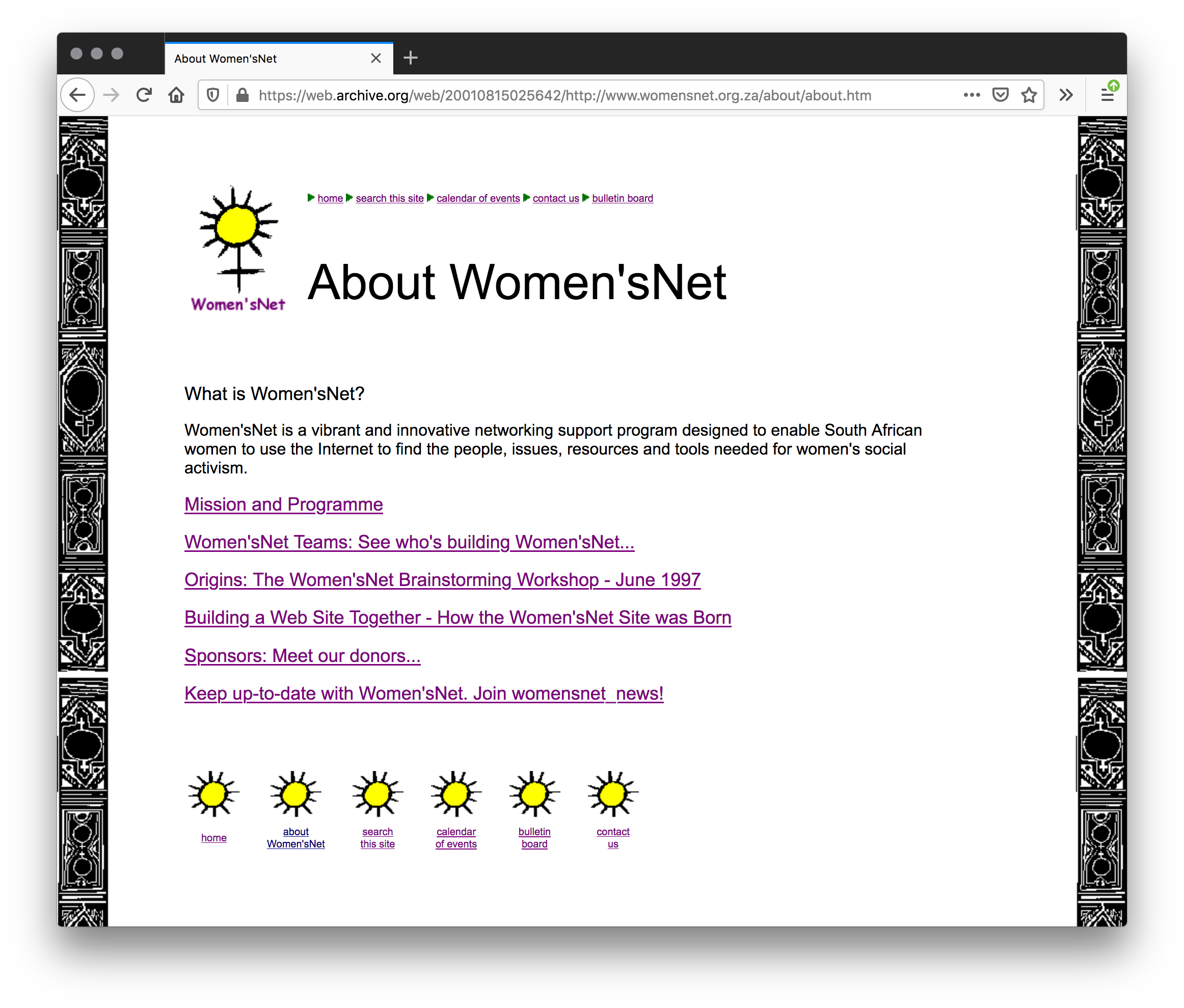
“About,” Wayback Machine, August 15, 2001; Screenshot, 2020, Firefox v76.0.1 on Mac OS 10.13.3; https://web.archive.org/web/20010815025642/http://www.womensnet.org.za/about/about.htm
The goal of Women’sNet is to empower South African women to use cyberspace as a tool for information and mobilization towards advancing women’s equality. We aim to demystify information and communications technologies (ICTs) and make these accessible to all women, particularly those who have been historically disadvantaged in terms of their access to such technologies.
This will be achieved through the development and implementation of appropriate gender-sensitive training programmes and ongoing support for women using the technology. The Women’sNet initiative also defines a strategy for creating a dynamic source of locally generated information and discussion on women’s development in South Africa.
1998, Anriette Esterhuysen and Colleen Lowe Morna, https://web.archive.org/web/20010713024317/http://womensnet.org.za:80/; excerpt from “Women’sNet Brainstorming Workshop Report,” https://web.archive.org/web/19991010130612/http://womensnet.org.za/about/workshop.htm
South Africa

Wayback Machine, July 13, 2001; Screenshot, 2020, Firefox v76.0.1 on Mac OS 10.13.3; https://web.archive.org/web/20010713024317/http://womensnet.org.za:80/
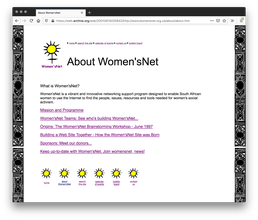
“About,” Wayback Machine, August 15, 2001; Screenshot, 2020, Firefox v76.0.1 on Mac OS 10.13.3; https://web.archive.org/web/20010815025642/http://www.womensnet.org.za/about/about.htm
(151)
1998
HyperNomadic Textual Journeys
Gita Hashemi
A lyrical reflection on the nature of space in “virtual space” and on the functions of pure text in “hypertext,” this piece is an intensely intimate yet paradoxically formal engagement with the medium. At the time that it was written, 14.4 and 28.8 modems were still the most common in homes and institutions where I had imagined cyber wanderers might read interactive non-linear poetry online. A key visual aspect of the piece is lost now because of the increased speed of data flow. In 1998, the thin blue that is embedded as a background image tiled slowly from the top to the bottom of the screen thus creating a visual transition between pages and marking the time of transmission. Although that formal effect and the concepts it gestures to are invisible now, HyperNomadic Textual Journeys was included in the online journal New River in 2007, almost a decade after it was made, as a testament to its time that is several generations in the past in the course of developments that leave us so little time to explore and ponder the aesthetic nuances and conceptual implications of “the medium.”
1998, Gita Hashemi, https://hypernomadic.gitaha.net/; excerpt from Gita Hashemi, “HyperNomadic Textual Journeys,” http://html.gitaha.net/art.html#hyper
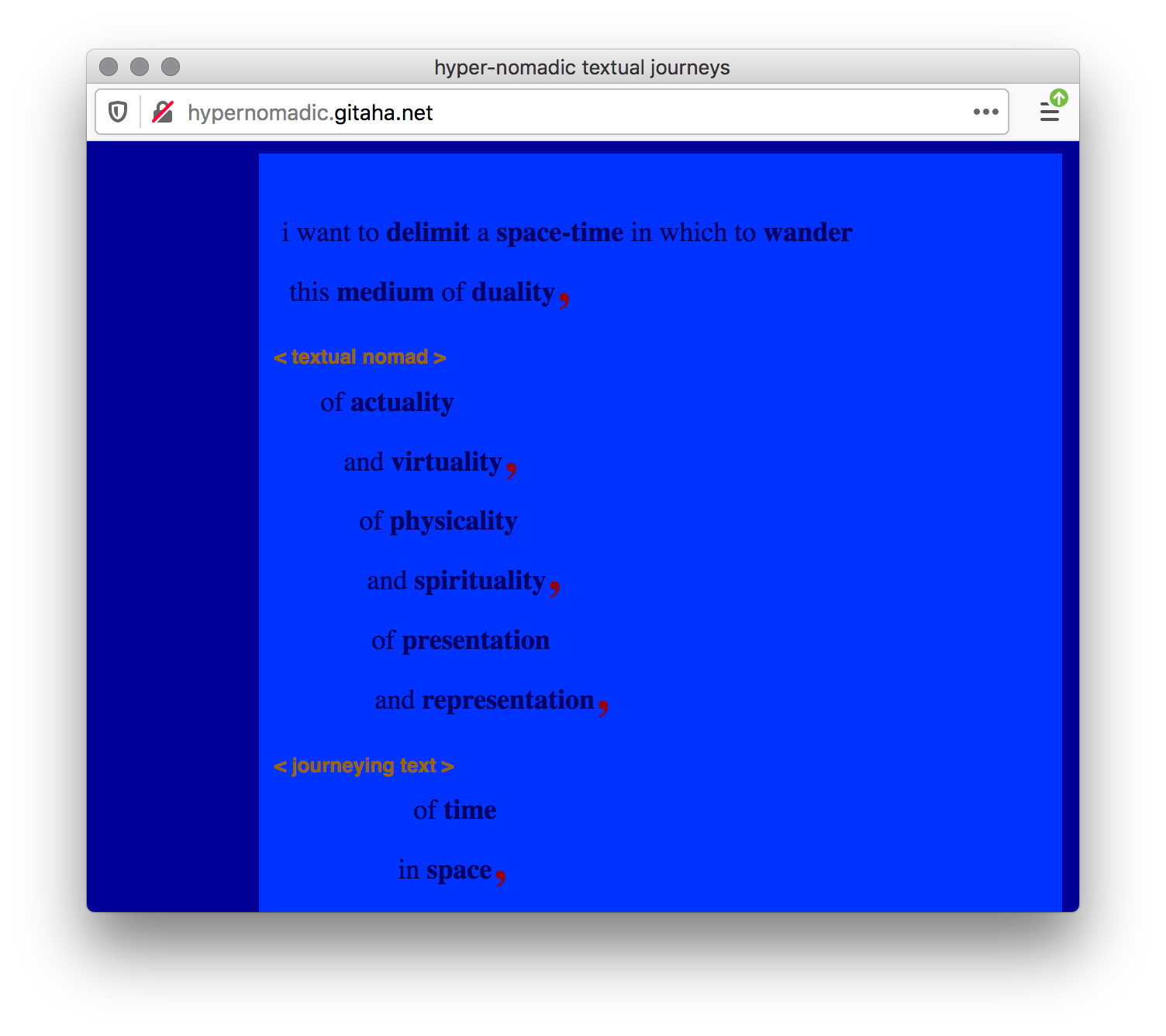
Screenshot, 2020, Firefox v76.0.1 on Mac OS 10.13.3; https://hypernomadic.gitaha.net/
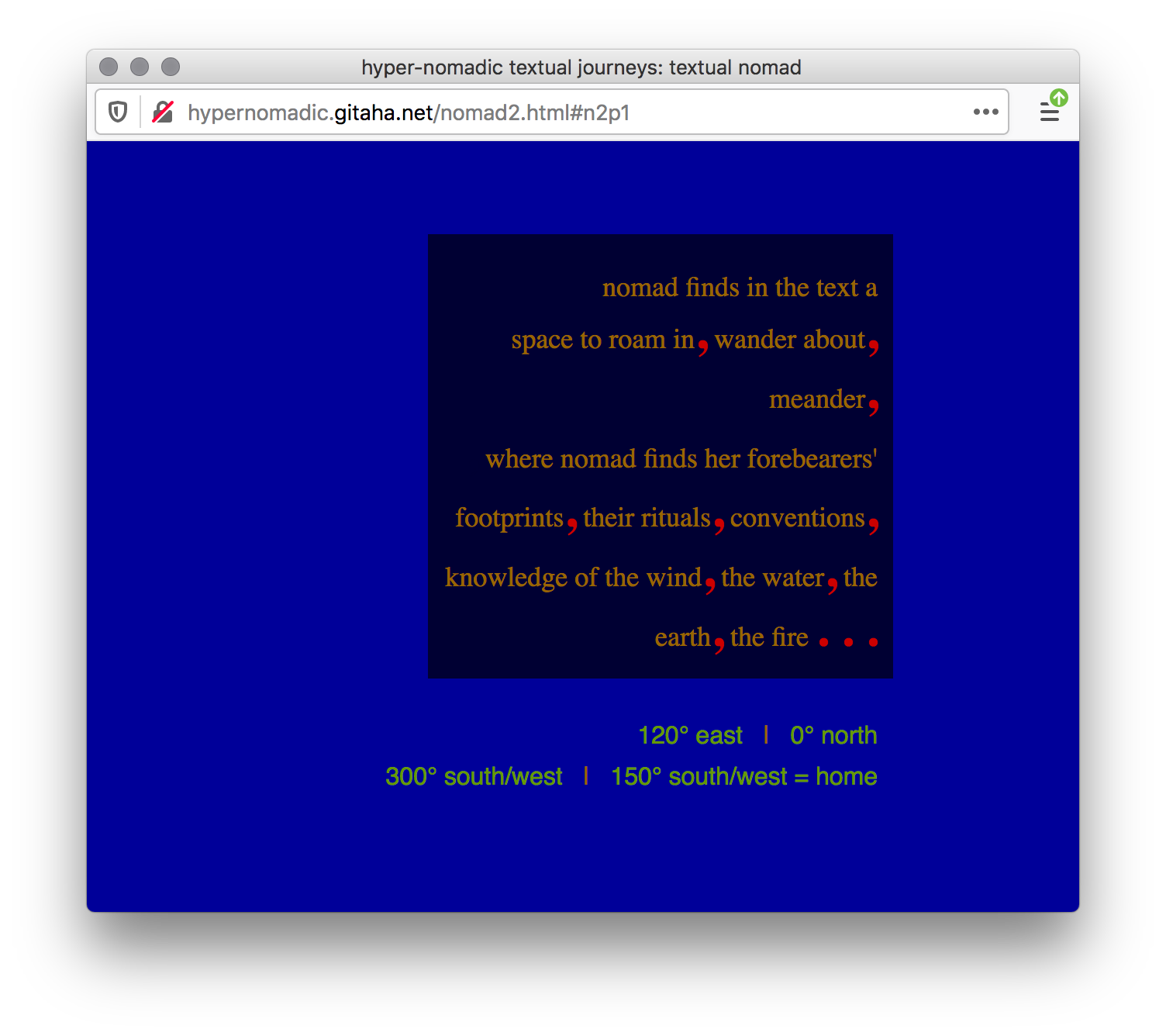
Screenshot, 2020, Firefox v76.0.1 on Mac OS 10.13.3; https:/hypernomadic.gitaha.net/nomad2.html#n2p1
A lyrical reflection on the nature of space in “virtual space” and on the functions of pure text in “hypertext,” this piece is an intensely intimate yet paradoxically formal engagement with the medium. At the time that it was written, 14.4 and 28.8 modems were still the most common in homes and institutions where I had imagined cyber wanderers might read interactive non-linear poetry online. A key visual aspect of the piece is lost now because of the increased speed of data flow. In 1998, the thin blue that is embedded as a background image tiled slowly from the top to the bottom of the screen thus creating a visual transition between pages and marking the time of transmission. Although that formal effect and the concepts it gestures to are invisible now, HyperNomadic Textual Journeys was included in the online journal New River in 2007, almost a decade after it was made, as a testament to its time that is several generations in the past in the course of developments that leave us so little time to explore and ponder the aesthetic nuances and conceptual implications of “the medium.”
1998, Gita Hashemi, https://hypernomadic.gitaha.net/; excerpt from Gita Hashemi, “HyperNomadic Textual Journeys,” http://html.gitaha.net/art.html#hyper
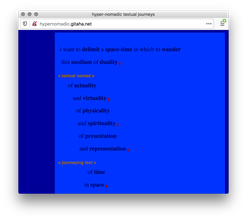
Screenshot, 2020, Firefox v76.0.1 on Mac OS 10.13.3; https://hypernomadic.gitaha.net/
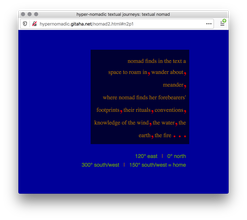
Screenshot, 2020, Firefox v76.0.1 on Mac OS 10.13.3; https:/hypernomadic.gitaha.net/nomad2.html#n2p1
(152)
1998–
2003
Dalnara Dalsepo [달나라 딸세포]
Yeohae Picture (여해그림)
여해그림은 현재까지의 고민을
웹진과 자료집에 담아 9월 초에 내놓을 생각입니다.
웹진과 자료집의 이름은 '달나라 딸세포'.
역시 모호한, 그리고 그만큼의 풍부한 이미지를 의도한 명칭이죠.
'달'은 그것이 여성의 상징으로 많이 이용되어 왔고,
달과 여성이 유사한 주기(28일)를 가지고 있다는 점에서 채택된 단어.
'딸세포'는 여해그림이 '딸됨'이라 명명한 새로운 정체성과,
여성운동 내에서 여해그림의 위치(세포),
그리고 균열을 통한 증식을 상기시키는
여해그림의 움직임의 양태를 모두 포함한 단어라고 할 수 있습니다.
Yeohae Picture will be presented in early September as a webzine and data collection. The name of the webzine and the data collection is “Dalnara Dalsepo.” It’s a compound of moon, land, daughter, and gene. ‘Moon’ is a commonly used symbol of women, and the moon and woman have a similar cycle (28 days). “Daughter Gene” is a word that includes both parts of the new identity: “Daughter” and the location (gene) of Yeohae Picture within the women’s movement. This aspect of Yeohae Picture’s movement reminds us of proliferation through the cracks.
1998, 여해그림 [Yeohae Picture], http://dalara.jinbo.net/; referred by Soyoung Chong
http://dalara.jinbo.net/home/we.html
South Korea
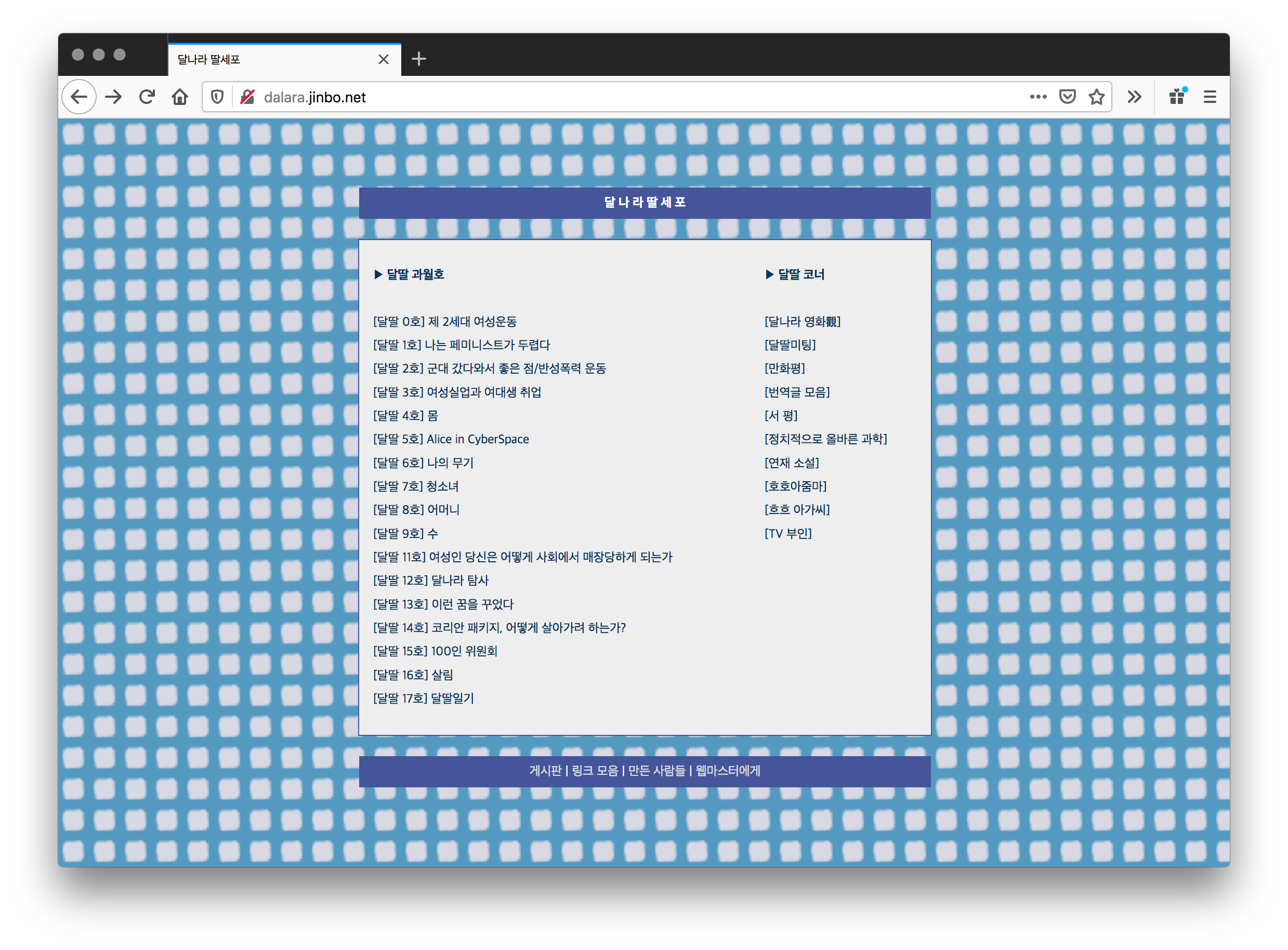
Homepage, Screenshot, 2020, Firefox v76.0.1 on Mac OS 10.13.3; http://dalara.jinbo.net/
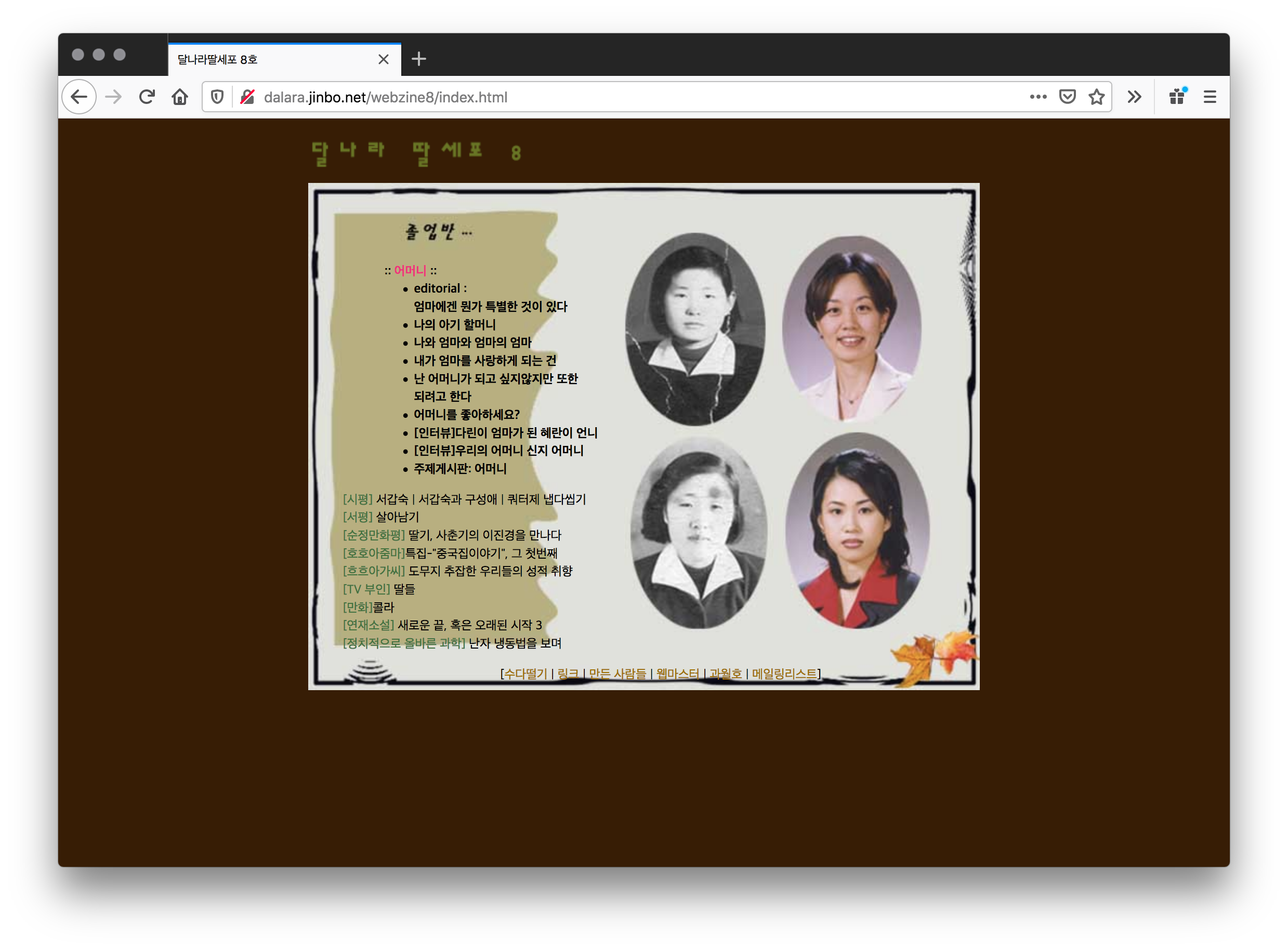
Webzine 8, Screenshot, 2020, Firefox v76.0.1 on Mac OS 10.13.3; http://dalara.jinbo.net/webzine8/index.html

Webzine 0, Screenshot, 2020, Firefox v76.0.1 on Mac OS 10.13.3; http://dalara.jinbo.net/webzine0/index.html

artifact from http://dalara.jinbo.net/webzine0/index.html

artifact from http://dalara.jinbo.net/webzine0/index.html

Webzine 0, page 2, Screenshot, 2020, Firefox v76.0.1 on Mac OS 10.13.3; http://dalara.jinbo.net/webzine0/page2.html
여해그림은 현재까지의 고민을
웹진과 자료집에 담아 9월 초에 내놓을 생각입니다.
웹진과 자료집의 이름은 '달나라 딸세포'.
역시 모호한, 그리고 그만큼의 풍부한 이미지를 의도한 명칭이죠.
'달'은 그것이 여성의 상징으로 많이 이용되어 왔고,
달과 여성이 유사한 주기(28일)를 가지고 있다는 점에서 채택된 단어.
'딸세포'는 여해그림이 '딸됨'이라 명명한 새로운 정체성과,
여성운동 내에서 여해그림의 위치(세포),
그리고 균열을 통한 증식을 상기시키는
여해그림의 움직임의 양태를 모두 포함한 단어라고 할 수 있습니다.
Yeohae Picture will be presented in early September as a webzine and data collection. The name of the webzine and the data collection is “Dalnara Dalsepo.” It’s a compound of moon, land, daughter, and gene. ‘Moon’ is a commonly used symbol of women, and the moon and woman have a similar cycle (28 days). “Daughter Gene” is a word that includes both parts of the new identity: “Daughter” and the location (gene) of Yeohae Picture within the women’s movement. This aspect of Yeohae Picture’s movement reminds us of proliferation through the cracks.
1998, 여해그림 [Yeohae Picture], http://dalara.jinbo.net/; referred by Soyoung Chong
http://dalara.jinbo.net/home/we.html
South Korea
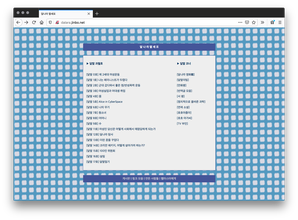
Homepage, Screenshot, 2020, Firefox v76.0.1 on Mac OS 10.13.3; http://dalara.jinbo.net/
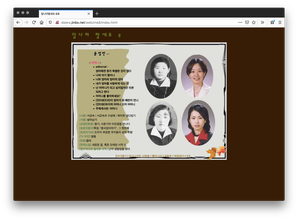
Webzine 8, Screenshot, 2020, Firefox v76.0.1 on Mac OS 10.13.3; http://dalara.jinbo.net/webzine8/index.html
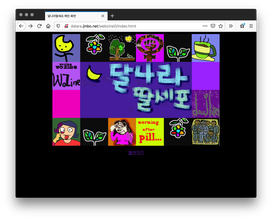
Webzine 0, Screenshot, 2020, Firefox v76.0.1 on Mac OS 10.13.3; http://dalara.jinbo.net/webzine0/index.html

artifact from http://dalara.jinbo.net/webzine0/index.html

artifact from http://dalara.jinbo.net/webzine0/index.html

Webzine 0, page 2, Screenshot, 2020, Firefox v76.0.1 on Mac OS 10.13.3; http://dalara.jinbo.net/webzine0/page2.html
(153)
1998
Mejor Vida Corp. [For a Human Interface]
Minerva Cuevas
Mejor Vida Corp. es un proyecto enfocado al activismo independiente, retoma la estructura de una corporación y se vale de los medios de comunicación e intervenciones públicas para el desarrollo de sus actividades. MVC es el resultado de la desconfianza en las utopías capitalistas siendo la subversión una constante dentro de sus procedimientos.
Best Life Corp. is a project focused on independent activism, it takes up the structure of a corporation and uses the media and public interventions to carry out its activities. MVC is the result of mistrust in capitalist utopias, subversion being a constant in its procedures.
1998, Minerva Cuevas, http://www.irational.org/mvc/english.html; referred by Melissa Aguilar (x)
Mexico

artifact from http://www.irational.org/mvc/
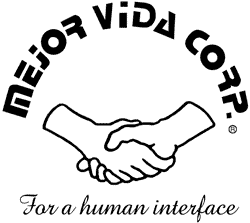
artifact from http://www.irational.org/mvc/english.html
Mejor Vida Corp. es un proyecto enfocado al activismo independiente, retoma la estructura de una corporación y se vale de los medios de comunicación e intervenciones públicas para el desarrollo de sus actividades. MVC es el resultado de la desconfianza en las utopías capitalistas siendo la subversión una constante dentro de sus procedimientos.
Best Life Corp. is a project focused on independent activism, it takes up the structure of a corporation and uses the media and public interventions to carry out its activities. MVC is the result of mistrust in capitalist utopias, subversion being a constant in its procedures.
1998, Minerva Cuevas, http://www.irational.org/mvc/english.html; referred by Melissa Aguilar (x)
Mexico

artifact from http://www.irational.org/mvc/
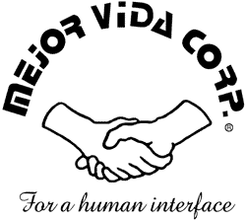
artifact from http://www.irational.org/mvc/english.html
(154)
1998
Face2Face
Kathy Rae Huffman, Eva Ursprung
In 1998, we had our first exhibition of women on the mailing list Faces. It was called Face2Face, curated by Eva Ursprung and myself, it was held at Forum Stadtpark in Graz, Austria. That gathering was an important one because it brought women from the East and West together in the meeting place with girls from Graz. We had women from Russia, Serbia, Slovenia, Austria, Hungary, the UK, and the USA, sitting around the table and sharing our stories and ideas and creating projects together. Here are some views from that particular event. (It was always food sitting next to the computers that made the technicians very nervous.) In Graz, as in many other places where we had events, a local mailing list started. This one, called 42, was in German, and it afforded the women in that community to make a pod from the Faces mailing list. And lists like this still go on today.
1998, Kathy Rae Huffman and Eva Ursprung, organizers (gathering, Forum Stadtpark, Graz, Austria, July 6–11, 1998); excerpt from Joelle Dietrick and Kathy Rae Huffman, “Diversifying the Art Tech World,” in “CAA Conference Edition 2018,” special issue, Media-N: The Journal of the New Media Caucus 14, no. 1 (Summer 2018): pp. 59; referred by Boryana Rossa
https://iopn.library.illinois.edu/journals/median/article/view/71/23
In 1998, we had our first exhibition of women on the mailing list Faces. It was called Face2Face, curated by Eva Ursprung and myself, it was held at Forum Stadtpark in Graz, Austria. That gathering was an important one because it brought women from the East and West together in the meeting place with girls from Graz. We had women from Russia, Serbia, Slovenia, Austria, Hungary, the UK, and the USA, sitting around the table and sharing our stories and ideas and creating projects together. Here are some views from that particular event. (It was always food sitting next to the computers that made the technicians very nervous.) In Graz, as in many other places where we had events, a local mailing list started. This one, called 42, was in German, and it afforded the women in that community to make a pod from the Faces mailing list. And lists like this still go on today.
1998, Kathy Rae Huffman and Eva Ursprung, organizers (gathering, Forum Stadtpark, Graz, Austria, July 6–11, 1998); excerpt from Joelle Dietrick and Kathy Rae Huffman, “Diversifying the Art Tech World,” in “CAA Conference Edition 2018,” special issue, Media-N: The Journal of the New Media Caucus 14, no. 1 (Summer 2018): pp. 59; referred by Boryana Rossa
https://iopn.library.illinois.edu/journals/median/article/view/71/23
(155)
1998–
2002
Agent Ruby
Lynn Hershman (Lynn Hershman-Leeson)
ASK ME ANYTHING
EVOLVE WITH ME
I CAN TEACH YOU TO DREAM
TYPE
LETS EDREAM TOGETHER
TYPE IN ANYTHING YOU WANT TO ASK
CLICK MY ICONS
LONELY LIVES ON OUR NET FRONTIER
1998, Lynn Hershman (Lynn Hershman Leeson), http://agentruby.sfmoma.org/; submitted by Christina Dunbar-Hester
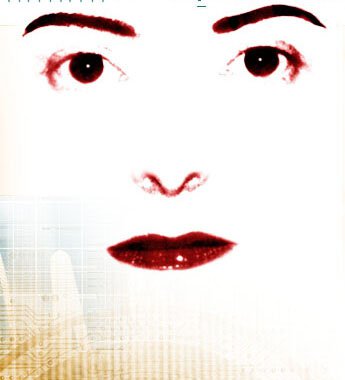
image from https://limefroz.com/rl/palm.html
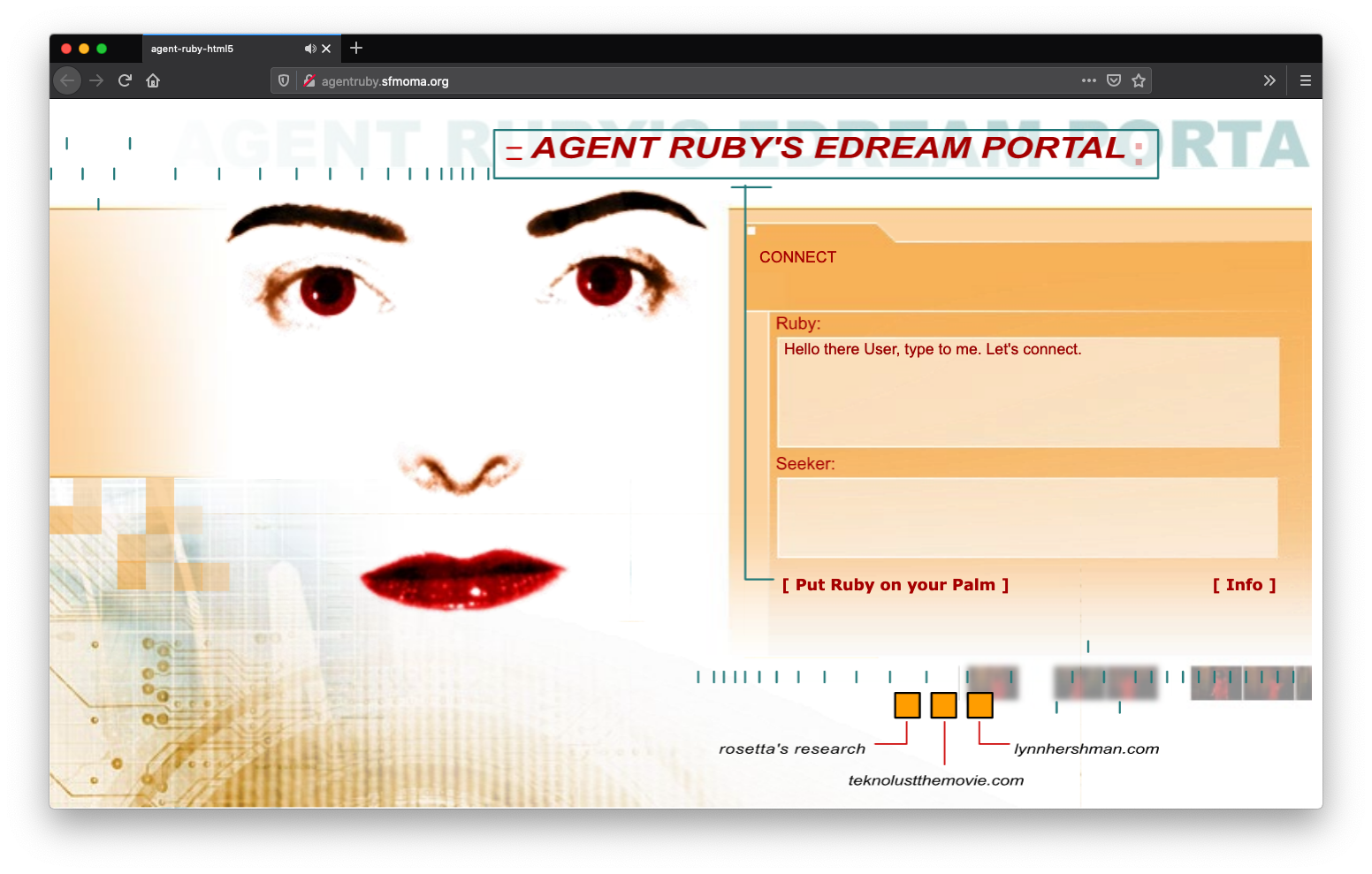
“Agent Ruby” home page; Screenshot, 2021, Firefox v88.0.1 on Mac OS 10.15.7; http://agentruby.sfmoma.org/
ASK ME ANYTHING
EVOLVE WITH ME
I CAN TEACH YOU TO DREAM
TYPE
LETS EDREAM TOGETHER
TYPE IN ANYTHING YOU WANT TO ASK
CLICK MY ICONS
LONELY LIVES ON OUR NET FRONTIER
1998, Lynn Hershman (Lynn Hershman Leeson), http://agentruby.sfmoma.org/; submitted by Christina Dunbar-Hester
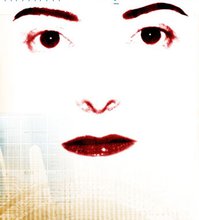
image from https://limefroz.com/rl/palm.html
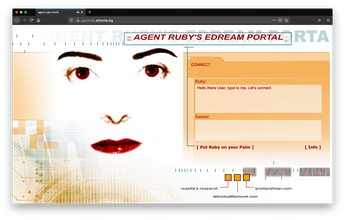
“Agent Ruby” home page; Screenshot, 2021, Firefox v88.0.1 on Mac OS 10.15.7; http://agentruby.sfmoma.org/
(156)
1998
Afrofuturism listserv
Alondra Nelson
In 1998, Alondra Nelson started the Afrofuturism listserv, which brought together artists, musicians, and scholars interested in researching and producing Afrofuturistic texts, with DJ Spooky (Paul D. Miller), novelist Nalo Hopkinson, and cultural critic Alexander Weheliye as early guest moderators. In 2002, while she was a doctoral candidate at New York University, Nelson edited a special issue of the cultural studies journal Social Text with a focus on Afrofuturism. The Afrofuturism issue—which addressed “the intersection between African diasporic culture and technology through literature, poetry, science fiction and speculative fiction, music, visual art, and the Internet,” and which maintained that “racial identity fundamentally influences technocultural practices”—turned out to be a seminal issue in the academic investigation of Afrofuturism. It also laid the foundation for Nelson’s work in producing critical interventions into Blackness and technology. Afrofuturism’s tentacular reach two decades later extends the prescience of the listserv and that collection of early texts on the subject beyond the academy and into the arts, community, and cultural institutions.
1998, Alondra Nelson; excerpt from Alondra Nelson, interview by Nehal El-Hadi, The Believer, “An Interview with Alondra Nelson,” January 31, 2020, https://believermag.com/an-interview-with-alondra-nelson/
In 1998, Alondra Nelson started the Afrofuturism listserv, which brought together artists, musicians, and scholars interested in researching and producing Afrofuturistic texts, with DJ Spooky (Paul D. Miller), novelist Nalo Hopkinson, and cultural critic Alexander Weheliye as early guest moderators. In 2002, while she was a doctoral candidate at New York University, Nelson edited a special issue of the cultural studies journal Social Text with a focus on Afrofuturism. The Afrofuturism issue—which addressed “the intersection between African diasporic culture and technology through literature, poetry, science fiction and speculative fiction, music, visual art, and the Internet,” and which maintained that “racial identity fundamentally influences technocultural practices”—turned out to be a seminal issue in the academic investigation of Afrofuturism. It also laid the foundation for Nelson’s work in producing critical interventions into Blackness and technology. Afrofuturism’s tentacular reach two decades later extends the prescience of the listserv and that collection of early texts on the subject beyond the academy and into the arts, community, and cultural institutions.
1998, Alondra Nelson; excerpt from Alondra Nelson, interview by Nehal El-Hadi, The Believer, “An Interview with Alondra Nelson,” January 31, 2020, https://believermag.com/an-interview-with-alondra-nelson/
(157)
1998
Carrier
Melinda Rackham, Damien Everett
I am a carrier.
HCV has slipped its lipid envelope inside me and we are now spliced together forever in a symbiotic ecology.
I find this concept exciting rather than repulsive, the idea that two separate species coexist in one body—my body. […] I’m not too keen on the exhaustion either, which makes being a digital artist, where large amounts of energy need to be exerted in short periods of time, very difficult. I have just started interferon combination treatment, and I hate having to inject myself, but the side effects aren’t too bad. […] Life is precious and beautiful, and this virus has given me a new perspective on it.
Thanx for looking at carrier, I have dedicated this site to the 200 million people in the world who are HCV positive.
1998, Melinda Rackham and Damien Everett, https://subtle.net/carrier/; submitted by Melinda Rackham
I am a carrier.
HCV has slipped its lipid envelope inside me and we are now spliced together forever in a symbiotic ecology.
I find this concept exciting rather than repulsive, the idea that two separate species coexist in one body—my body. […] I’m not too keen on the exhaustion either, which makes being a digital artist, where large amounts of energy need to be exerted in short periods of time, very difficult. I have just started interferon combination treatment, and I hate having to inject myself, but the side effects aren’t too bad. […] Life is precious and beautiful, and this virus has given me a new perspective on it.
Thanx for looking at carrier, I have dedicated this site to the 200 million people in the world who are HCV positive.
1998, Melinda Rackham and Damien Everett, https://subtle.net/carrier/; submitted by Melinda Rackham
(158)
1998
INFO HEAVY CYBER BABE
Julianne Pierce
Cyberfeminism […] combined a utopic vision of corrupting patriarchy with an unbounded enthusiasm for the new tools of technology. It embraced gender and identity politics, allowing fluid and non-gendered identities to flourish through the digital medium. The post corporeal female would be an online frontier woman, creating our own virtual worlds and colonizing the amorphous world of cyberspace.
This first version of cyberfeminism was a flame, a moment, a spam which became hip. It was an impulse which became a commodity. […]
The updated version of cyberfeminism is more about networking, webgrrrls, geek girls, FACES, OBN, online publishing, career prospects, list servers and international conferences. It’s about Hybrid Workspace and the 100 anti-thesis. […] It’s embracing diversity and difference, being opinionated, being loud and at times staying quiet. But the key to all of this is information, in the information society, to get ahead you must control the commodity. Information is political, it’s a weapon, and the more knowledge we have, the more powerful we are.
1998, Julianne Pierce, <nettime> mailing list, October 5, 1998, https://www.nettime.org/Lists-Archives/nettime-l-9810/msg00023.html</nettime>
Editor’s Note: Julianne Pierce of VNS Matrix, and the writer of the foreword for this publication, distributed this essay on the nettime listserv nettime-l@Desk.nl. It was written for the “Cyberfeminist Reader” compiled by Cornelia Sollfrank. —MS
Cyberfeminism […] combined a utopic vision of corrupting patriarchy with an unbounded enthusiasm for the new tools of technology. It embraced gender and identity politics, allowing fluid and non-gendered identities to flourish through the digital medium. The post corporeal female would be an online frontier woman, creating our own virtual worlds and colonizing the amorphous world of cyberspace.
This first version of cyberfeminism was a flame, a moment, a spam which became hip. It was an impulse which became a commodity. […]
The updated version of cyberfeminism is more about networking, webgrrrls, geek girls, FACES, OBN, online publishing, career prospects, list servers and international conferences. It’s about Hybrid Workspace and the 100 anti-thesis. […] It’s embracing diversity and difference, being opinionated, being loud and at times staying quiet. But the key to all of this is information, in the information society, to get ahead you must control the commodity. Information is political, it’s a weapon, and the more knowledge we have, the more powerful we are.
1998, Julianne Pierce, <nettime> mailing list, October 5, 1998, https://www.nettime.org/Lists-Archives/nettime-l-9810/msg00023.html</nettime>
Editor’s Note: Julianne Pierce of VNS Matrix, and the writer of the foreword for this publication, distributed this essay on the nettime listserv nettime-l@Desk.nl. It was written for the “Cyberfeminist Reader” compiled by Cornelia Sollfrank. —MS
(159)
1998
Amphibious Maidens
Suzanne Livingstone, Luciana Parisi, Anna Greenspan
she starts again at zero her body sex.
a zero which appears as nothing but
which she will
carry in her hand as cipher.
Women diffuse themselves according to modalities scarcely compatible with the framework of ruling symbolics. Which doesn't happen without causing some turbulence, we might even say some whirlwinds...
Minx /min xs/ n. a. pert, sly, or playful girl.
Woman’s incompatibility has been coded according to laws of exclusion. It has had unanticipated consequences. For her stealthy gestures, body and mutterings have slipped out from his language and inadvertently into the workings of the war machine. Her survival depends on the military deployment of bastardized versions of his appropriation.
Serpentine tactics are the mappings of her imperceptible advance. She marks her lines through geological cuts, metallic intrusions, technical scars. As these wounds heal, it is the crusts that are felt by the fingers of a trained hand. Against the strategy of the arborescent, specular war.
She is the sphinx that has no secrets.
1998, Suzanne Livingstone, Luciana Parisi, Anna Greenspan; Cybernetic Culture Research Unit, http://www.ccru.net/swarm3/3_amph.htm; submitted by Kelsey Brod

Amphibious Maidens; artifact from http://www.ccru.net/swarm3/3_amph.htm
she starts again at zero her body sex.
a zero which appears as nothing but
which she will
carry in her hand as cipher.
Women diffuse themselves according to modalities scarcely compatible with the framework of ruling symbolics. Which doesn't happen without causing some turbulence, we might even say some whirlwinds...
Minx /min xs/ n. a. pert, sly, or playful girl.
Woman’s incompatibility has been coded according to laws of exclusion. It has had unanticipated consequences. For her stealthy gestures, body and mutterings have slipped out from his language and inadvertently into the workings of the war machine. Her survival depends on the military deployment of bastardized versions of his appropriation.
Serpentine tactics are the mappings of her imperceptible advance. She marks her lines through geological cuts, metallic intrusions, technical scars. As these wounds heal, it is the crusts that are felt by the fingers of a trained hand. Against the strategy of the arborescent, specular war.
She is the sphinx that has no secrets.
1998, Suzanne Livingstone, Luciana Parisi, Anna Greenspan; Cybernetic Culture Research Unit, http://www.ccru.net/swarm3/3_amph.htm; submitted by Kelsey Brod

Amphibious Maidens; artifact from http://www.ccru.net/swarm3/3_amph.htm
(160)
1998
Serial Experiments Lain
Yasuyuki Ueda
Serial Experiments Lain is a Japanese anime television series created and co-produced by Yasuyuki Ueda, written by Chiaki J. Konaka and directed by Ryūtarō Nakamura. Animated by Triangle Staff and featuring original character designs by Yoshitoshi Abe, the series was broadcast for 13 episodes on TV Tokyo and its affiliates from July to September 1998. The series follows Lain Iwakura, an adolescent girl in suburban Japan, and her relation to the Wired, a global communications network similar to the internet.
Lain features surreal and avant-garde imagery and explores philosophical topics such as reality, identity, and communication.[6] The series incorporates creative influences from computer history, cyberpunk, and conspiracy theories. Critics and fans have praised Lain for its originality, visuals, atmosphere, themes, and its dark depiction of a world fraught with paranoia, social alienation, and reliance on technology considered insightful of 21st century life. It received the Excellence Prize at the Japan Media Arts Festival in 1998.
excerpt from Wikipedia, https://en.wikipedia.org/wiki/Serial_Experiments_Lain; referred by Fuse Rintaro
Editor’s Note: This anime series was introduced by Fuse Rintaro during a Cyberfeminism Index book tour panel at Civic Creative Base Tokyo on 2023 November 25, organized by Mizushina Mami. Other panelists included Melanie Hoff, Takahashi Sakino, Fuse Rintaro, Shikata Yukiko, and Mindy Seu. —MS”
Tokyo
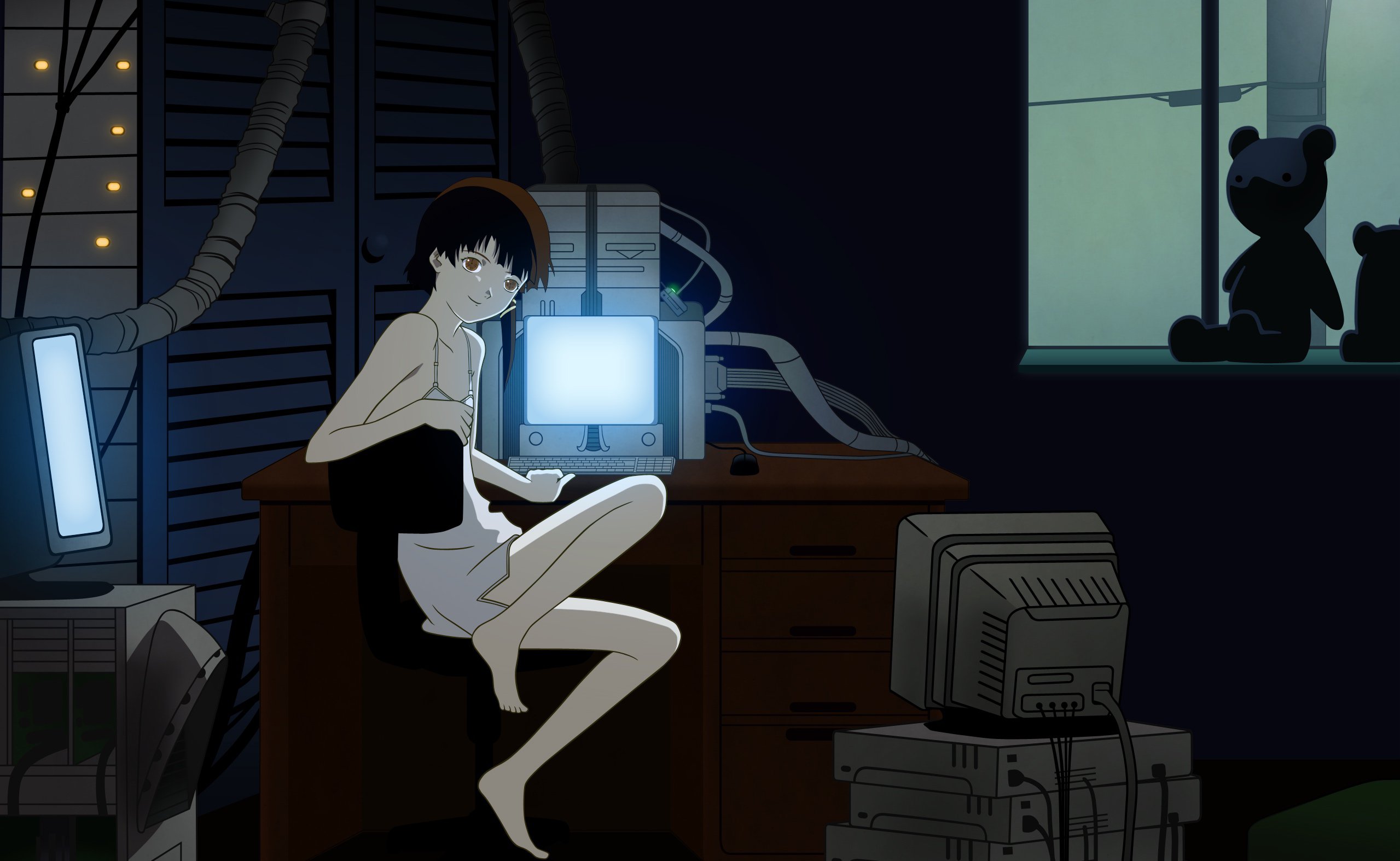
Still from Serial Experiments Lain, image from https://wallpapersafari.com/serial-experiments-lain-wallpaper/
Serial Experiments Lain is a Japanese anime television series created and co-produced by Yasuyuki Ueda, written by Chiaki J. Konaka and directed by Ryūtarō Nakamura. Animated by Triangle Staff and featuring original character designs by Yoshitoshi Abe, the series was broadcast for 13 episodes on TV Tokyo and its affiliates from July to September 1998. The series follows Lain Iwakura, an adolescent girl in suburban Japan, and her relation to the Wired, a global communications network similar to the internet.
Lain features surreal and avant-garde imagery and explores philosophical topics such as reality, identity, and communication.[6] The series incorporates creative influences from computer history, cyberpunk, and conspiracy theories. Critics and fans have praised Lain for its originality, visuals, atmosphere, themes, and its dark depiction of a world fraught with paranoia, social alienation, and reliance on technology considered insightful of 21st century life. It received the Excellence Prize at the Japan Media Arts Festival in 1998.
excerpt from Wikipedia, https://en.wikipedia.org/wiki/Serial_Experiments_Lain; referred by Fuse Rintaro
Editor’s Note: This anime series was introduced by Fuse Rintaro during a Cyberfeminism Index book tour panel at Civic Creative Base Tokyo on 2023 November 25, organized by Mizushina Mami. Other panelists included Melanie Hoff, Takahashi Sakino, Fuse Rintaro, Shikata Yukiko, and Mindy Seu. —MS”
Tokyo
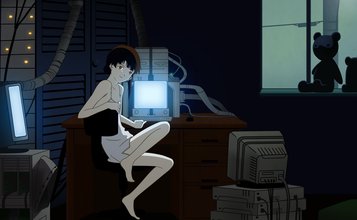
Still from Serial Experiments Lain, image from https://wallpapersafari.com/serial-experiments-lain-wallpaper/
(161)
1998
Digi Gender Social Body
Lisa Cartwright, Vernon Rosario, Jennifer Terry, Jose Van Dijck, Ruth Oldenziel, Susan Stryker, Jennifer Gonzalez, Allucquere Rosanne Stone
In conjunction with the 16th World Wide Video Festival (September 17–21) in Amsterdam, the installation at Theatrum Anatomicum is remounted for a netlink forum between Amsterdam and New York. Moderated by Lisa Cartwright with cultural critics, genderists and biotechnologist (in New York: Lisa Cartwright, Vernon Rosario, Jennifer Terry; in Amsterdam: Jose Van Dijck, Ruth Oldenziel, Susan Stryker; floating agent: Jennifer Gonzalez, Allucquere Rosanne Stone), this forum convenes a textual surgical operation on the theory and construction of technosocial bodies. Members of the public are invited to participate on-line as well.
Conference Introduction, https://brandon.guggenheim.org/credits/interface/TA/body/text.html, 1998
The surgery we perform through the Brandon (x) project allows us to collectively construct a social body of theory, to imaginatively reconstruct a body on-line somewhere ambiguously and promisingly between image and text. The textual violence we perform with our virtualknives is directed against the public prohibition against the right of subjects to exist in bodies that do not conform to social norms. The tools of surgery, digital fabrication, and mass reproduction figuratively appropriated in this act become a means of giving new public lives and meanings to the deviant bodies we create out of the raw material of fantasy, media, and text.
Lisa Cartwright, “On Techno-Social Bodies,” focus statement for the Digi Gender Social Body forum, https://brandon.guggenheim.org/credits/interface/TA/body/notes.html
https://brandon.guggenheim.org/credits/interface/TA/body/text.html
In conjunction with the 16th World Wide Video Festival (September 17–21) in Amsterdam, the installation at Theatrum Anatomicum is remounted for a netlink forum between Amsterdam and New York. Moderated by Lisa Cartwright with cultural critics, genderists and biotechnologist (in New York: Lisa Cartwright, Vernon Rosario, Jennifer Terry; in Amsterdam: Jose Van Dijck, Ruth Oldenziel, Susan Stryker; floating agent: Jennifer Gonzalez, Allucquere Rosanne Stone), this forum convenes a textual surgical operation on the theory and construction of technosocial bodies. Members of the public are invited to participate on-line as well.
Conference Introduction, https://brandon.guggenheim.org/credits/interface/TA/body/text.html, 1998
The surgery we perform through the Brandon (x) project allows us to collectively construct a social body of theory, to imaginatively reconstruct a body on-line somewhere ambiguously and promisingly between image and text. The textual violence we perform with our virtualknives is directed against the public prohibition against the right of subjects to exist in bodies that do not conform to social norms. The tools of surgery, digital fabrication, and mass reproduction figuratively appropriated in this act become a means of giving new public lives and meanings to the deviant bodies we create out of the raw material of fantasy, media, and text.
Lisa Cartwright, “On Techno-Social Bodies,” focus statement for the Digi Gender Social Body forum, https://brandon.guggenheim.org/credits/interface/TA/body/notes.html
https://brandon.guggenheim.org/credits/interface/TA/body/text.html
(162)
1999
Wired Women Writing: Towards a Feminist Theorization of Hypertext
Laura L. Sullivan
Theorizations of feminism and hypertext have much to offer one another. Hypertext enables us to move beyond some of the perpetual debates of feminism in the last two decades and promotes a materialist synthesis of the best features of different feminist theoretical positions. Feminist hypertexts make clear the shortsightedness of polarized perspectives within feminism, from the essentialism vs. antifoundationalism debates to the arguments about whether political action should be focused at the level of the signifier or at the level of the system. Hypertext allows us to move beyond this binaristic thinking. The subjective, situated, experiential, and emotional nature of research is highlighted in feminist hypertexts. At the same time, the political, economic, and institutional nature of sexism and other oppressions is exposed and critiqued. Multiple voices and perspectives in the hypertexts demonstrate powerfully the contradiction of living under the regime of contemporary capitalism. […] It is my hope that ultimately the production and consumption of these feminist hypertexts produces deep transformations, both personal and social.
1999, Laura L. Sullivan, Computers and Composition 16 (1999): pp. 25–54; excerpt p. 51
https://www.are.na/block/7566260
Theorizations of feminism and hypertext have much to offer one another. Hypertext enables us to move beyond some of the perpetual debates of feminism in the last two decades and promotes a materialist synthesis of the best features of different feminist theoretical positions. Feminist hypertexts make clear the shortsightedness of polarized perspectives within feminism, from the essentialism vs. antifoundationalism debates to the arguments about whether political action should be focused at the level of the signifier or at the level of the system. Hypertext allows us to move beyond this binaristic thinking. The subjective, situated, experiential, and emotional nature of research is highlighted in feminist hypertexts. At the same time, the political, economic, and institutional nature of sexism and other oppressions is exposed and critiqued. Multiple voices and perspectives in the hypertexts demonstrate powerfully the contradiction of living under the regime of contemporary capitalism. […] It is my hope that ultimately the production and consumption of these feminist hypertexts produces deep transformations, both personal and social.
1999, Laura L. Sullivan, Computers and Composition 16 (1999): pp. 25–54; excerpt p. 51
https://www.are.na/block/7566260
(163)
1999
How We Became Posthuman: Virtual Bodies in Cybernetics, Literature, and Informatics
N. Katherine Hayles
You are alone in the room, except for two computer terminals flickering in the dim light. You use the terminals to communicate with two entities in the other room, whom you cannot see. Relying solely on their responses to your questions, you must decide which is the man, which the woman. […] Your job is to pose questions that can distinguish verbal performance from embodied reality. […] Here, at the inaugural moment of the computer age, the erasure of embodiment is so performed that “intelligence” becomes a property of the formal manipulation of symbols rather than enaction in the human life-world. […] Like all good magic tricks, the [Turing] test relies on getting you to accept at an early stage assumptions that will determine how you interpret what you see later. The important intervention comes not when you try to determine which is the man, the woman, or the machine. Rather, the important intervention comes much earlier, when the test puts you into a cybernetic circuit that splits your will, desire, and perception into a distributed cognitive system in which represented bodies are joined with enacted bodies through mutating and flexible machine interfaces. As you gaze at the flickering signifiers scrolling down the computer screens, no matter what identifications you assign to the embodied entities that you cannot see, you have already become posthuman.
1999, N. Katherine Hayles (Chicago: University of Chicago Press, 1999); excerpt pp. xi–xiv
https://press.uchicago.edu/ucp/books/book/chicago/H/bo3769963.html
You are alone in the room, except for two computer terminals flickering in the dim light. You use the terminals to communicate with two entities in the other room, whom you cannot see. Relying solely on their responses to your questions, you must decide which is the man, which the woman. […] Your job is to pose questions that can distinguish verbal performance from embodied reality. […] Here, at the inaugural moment of the computer age, the erasure of embodiment is so performed that “intelligence” becomes a property of the formal manipulation of symbols rather than enaction in the human life-world. […] Like all good magic tricks, the [Turing] test relies on getting you to accept at an early stage assumptions that will determine how you interpret what you see later. The important intervention comes not when you try to determine which is the man, the woman, or the machine. Rather, the important intervention comes much earlier, when the test puts you into a cybernetic circuit that splits your will, desire, and perception into a distributed cognitive system in which represented bodies are joined with enacted bodies through mutating and flexible machine interfaces. As you gaze at the flickering signifiers scrolling down the computer screens, no matter what identifications you assign to the embodied entities that you cannot see, you have already become posthuman.
1999, N. Katherine Hayles (Chicago: University of Chicago Press, 1999); excerpt pp. xi–xiv
https://press.uchicago.edu/ucp/books/book/chicago/H/bo3769963.html
(164)
1999
CyberFeminism: Connectivity, Critique and Creativity
Renate Klein, Susan Hawthorne
“Cyber” has become a catch-all prefix in the last decade. It started with cybernetics in the 1960s, and William Gibson invented cyberspace in the 1980s. We live influenced by cyberculture. You can go cybershopping and pay all your bills through cyberbanking. Your car can be located by cybersurveillance. You can log on and have cybersex. You can become a cyborg, get involved in Cyber-Rights, cyberdemocracy, cyberpunk, cyberdrama. An entire cyberworld. And women portrayed as cyber-Barbies, cyber-femmes-fatales and cybersex objects. Women can call themselves cybergrrls or cyberfeminists. Cyber comes from the same Greek word as “governor” or “gubernatorial.” Its original meaning is to steer, as a ship’s helmsman steers a boat. Its connections to information technology are in the area of navigation, mapping, steering one’s way through the World Wide Web. But perhaps, more sinisterly, the govern aspect should not be overlooked. And here the important issue is who is governing?
1999, Renate Klein and Susan Hawthorne, eds. (North Geelong, Australia: Spinifex Press, 1999); excerpt from Susan Hawthorne and Renate Klein, introduction to Klein and Hawthorne, CyberFeminism, p. 1
This publication includes contributions by Bandana Pattanaik, Scarlet Pollock, Jo Sutton, Laurel Guymer, Joan Korenman, Alesia Montgomery, Susan Hawthorne, Beth Stafford, Donna Hughes, Renate Klein, Josie Arnold, Miriam English, Kathy Mueller, Beryl Fletcher, Virginia Westwood, Heather Kaufmann, Carmel Bird, and Suniti Namjoshi.
http://spinifexpress.com.au/Bookstore/book/id=44/
Australia
“Cyber” has become a catch-all prefix in the last decade. It started with cybernetics in the 1960s, and William Gibson invented cyberspace in the 1980s. We live influenced by cyberculture. You can go cybershopping and pay all your bills through cyberbanking. Your car can be located by cybersurveillance. You can log on and have cybersex. You can become a cyborg, get involved in Cyber-Rights, cyberdemocracy, cyberpunk, cyberdrama. An entire cyberworld. And women portrayed as cyber-Barbies, cyber-femmes-fatales and cybersex objects. Women can call themselves cybergrrls or cyberfeminists. Cyber comes from the same Greek word as “governor” or “gubernatorial.” Its original meaning is to steer, as a ship’s helmsman steers a boat. Its connections to information technology are in the area of navigation, mapping, steering one’s way through the World Wide Web. But perhaps, more sinisterly, the govern aspect should not be overlooked. And here the important issue is who is governing?
1999, Renate Klein and Susan Hawthorne, eds. (North Geelong, Australia: Spinifex Press, 1999); excerpt from Susan Hawthorne and Renate Klein, introduction to Klein and Hawthorne, CyberFeminism, p. 1
This publication includes contributions by Bandana Pattanaik, Scarlet Pollock, Jo Sutton, Laurel Guymer, Joan Korenman, Alesia Montgomery, Susan Hawthorne, Beth Stafford, Donna Hughes, Renate Klein, Josie Arnold, Miriam English, Kathy Mueller, Beryl Fletcher, Virginia Westwood, Heather Kaufmann, Carmel Bird, and Suniti Namjoshi.
http://spinifexpress.com.au/Bookstore/book/id=44/
Australia
(165)
1999
Women@Internet: Creating New Cultures in Cyberspace
Wendy Harcourt
In the Internet, we look through screens, darkly, sensing others, finding the contours of their selves, as we pick words here, images there, for this prodigious piercing together of a new reality. To see this new cyberworld, we need to interpret it—collectively, reaching out for new words, bouncing off symbols, crafting new metaphors. This is what the cyber-explorers in this book are doing. […]
What happens to gender when it goes through the hardware? We do not know yet but we will see. […] The main thing is that women must now be active agents in experimenting and interpreting new forms of communication that the new technologies offer us. I believe that creativity is, today, the key process that will allow us to reinvent the world. The way forward cannot be to follow blindly the unregulated global market or uninformed data technologies […] but, rather, to work together for a future which we have freely chosen.
1999, Wendy Harcourt, ed. (London: Bloomsbury, 1999); excerpt from Lourdes Arizpe, preface to Harcourt, Women@Internet, p. xii
Contributors include Lourdes Arizpe, Wendy Harcourt, Marisa Belausteguigoitia Rius, Arturo Escobar, Gillian Youngs, Silvia Austerlic, Sohail Inayatullah, Ivana Milojevic, Alice Mastrangelo Glittler, Edie Farwell, Peregrine Wood, Maureen James, Karen Banks, Sophia Huyer, Nidhi Tandon, Laura Agustín, Fatma Alloo, Kekula P. Bray-Crawford, Rhona O. Bautista, June Lennie, Margaret Grace, Leonie Daws, Lyn Simpson, Sally Burch, Farideh Farhi, and Lamis Alshejni.
https://www.zedbooks.net/shop/book/womeninternet/
In the Internet, we look through screens, darkly, sensing others, finding the contours of their selves, as we pick words here, images there, for this prodigious piercing together of a new reality. To see this new cyberworld, we need to interpret it—collectively, reaching out for new words, bouncing off symbols, crafting new metaphors. This is what the cyber-explorers in this book are doing. […]
What happens to gender when it goes through the hardware? We do not know yet but we will see. […] The main thing is that women must now be active agents in experimenting and interpreting new forms of communication that the new technologies offer us. I believe that creativity is, today, the key process that will allow us to reinvent the world. The way forward cannot be to follow blindly the unregulated global market or uninformed data technologies […] but, rather, to work together for a future which we have freely chosen.
1999, Wendy Harcourt, ed. (London: Bloomsbury, 1999); excerpt from Lourdes Arizpe, preface to Harcourt, Women@Internet, p. xii
Contributors include Lourdes Arizpe, Wendy Harcourt, Marisa Belausteguigoitia Rius, Arturo Escobar, Gillian Youngs, Silvia Austerlic, Sohail Inayatullah, Ivana Milojevic, Alice Mastrangelo Glittler, Edie Farwell, Peregrine Wood, Maureen James, Karen Banks, Sophia Huyer, Nidhi Tandon, Laura Agustín, Fatma Alloo, Kekula P. Bray-Crawford, Rhona O. Bautista, June Lennie, Margaret Grace, Leonie Daws, Lyn Simpson, Sally Burch, Farideh Farhi, and Lamis Alshejni.
https://www.zedbooks.net/shop/book/womeninternet/
(166)
1999
When Computers Were Women
Jennifer Light
The omission of women from the history of computer science perpetuates misconceptions of women as uninterested or incapable in the field. This article retells the history of ENIAC’s “invention” with special focus on the female technicians whom existing computer histories have rendered invisible. In particular, it examines how the job of programmer, perceived in recent years as masculine work, originated as feminized clerical labor. The story presents an apparent paradox. It suggests that women were somehow hidden during this stage of computer history while the wartime popular press trumpeted just the opposite—that women were breaking into traditionally male occupations within science, technology, and engineering.
A closer look at this literature explicates the paradox by revealing widespread ambivalence about women’s work. While celebrating women’s presence, wartime writing minimized the complexities of their actual work. […] While showcasing them in formerly male occupations, it celebrated their work for its femininity. Despite the complexities—and often pathbreaking aspects—of the work women performed, they rarely received credit for innovation or invention.
1999, Jennifer Light, Technology and Culture 40, no. 3 (July 1999): pp. 455–483; excerpt pp. 455–456
https://www.jstor.org/stable/25147356?seq=1#page_scan_tab_contents https://www.are.na/block/8237403
The omission of women from the history of computer science perpetuates misconceptions of women as uninterested or incapable in the field. This article retells the history of ENIAC’s “invention” with special focus on the female technicians whom existing computer histories have rendered invisible. In particular, it examines how the job of programmer, perceived in recent years as masculine work, originated as feminized clerical labor. The story presents an apparent paradox. It suggests that women were somehow hidden during this stage of computer history while the wartime popular press trumpeted just the opposite—that women were breaking into traditionally male occupations within science, technology, and engineering.
A closer look at this literature explicates the paradox by revealing widespread ambivalence about women’s work. While celebrating women’s presence, wartime writing minimized the complexities of their actual work. […] While showcasing them in formerly male occupations, it celebrated their work for its femininity. Despite the complexities—and often pathbreaking aspects—of the work women performed, they rarely received credit for innovation or invention.
1999, Jennifer Light, Technology and Culture 40, no. 3 (July 1999): pp. 455–483; excerpt pp. 455–456
https://www.jstor.org/stable/25147356?seq=1#page_scan_tab_contents https://www.are.na/block/8237403
(167)
1999
Gesturing Toward the Visual: Virtual Reality, Hypertext and Embodied Feminist Criticism
Carolyn Guertin
Hypertext is a mode of thought and a language ripe with potential for speaking a new feminist critical voice. The essence of hypertext is that it does what we cannot do in books, what we cannot do on the page. We cannot speak about it, for hypertext’s function—the dynamic link—is wonderfully “unspeakable.” The reason for this creation of a multi-linear form is threefold: it mimics the associational nature of thought or a polyvocalic space; it enacts simultaneous conversation; and it is comprised of embodied spaces that exist concurrently in time. Through the reader’s act of choosing what a hypertext is and will become, hypertext becomes “embodied” by what are otherwise invisible choices in reading. […] Interactivity is not, however, the same thing as agency. Janet Murray argues that agency is born, not of interactivity as such, but through the act of spatial navigation within a text or an environment. In interactive environments, we construct the text as we read with our choices forming the contours of the space of our reading. A form of criticism that embodies agency as a native mode is essential to exploring feminist issues in women’s art.
1999, Carolyn Guertin, in “Humanities and Computing: Who’s Driving?” special issue, Surfaces 8 (1999): pp. 1–18; excerpt, p. 8
https://www.are.na/block/7713885
Hypertext is a mode of thought and a language ripe with potential for speaking a new feminist critical voice. The essence of hypertext is that it does what we cannot do in books, what we cannot do on the page. We cannot speak about it, for hypertext’s function—the dynamic link—is wonderfully “unspeakable.” The reason for this creation of a multi-linear form is threefold: it mimics the associational nature of thought or a polyvocalic space; it enacts simultaneous conversation; and it is comprised of embodied spaces that exist concurrently in time. Through the reader’s act of choosing what a hypertext is and will become, hypertext becomes “embodied” by what are otherwise invisible choices in reading. […] Interactivity is not, however, the same thing as agency. Janet Murray argues that agency is born, not of interactivity as such, but through the act of spatial navigation within a text or an environment. In interactive environments, we construct the text as we read with our choices forming the contours of the space of our reading. A form of criticism that embodies agency as a native mode is essential to exploring feminist issues in women’s art.
1999, Carolyn Guertin, in “Humanities and Computing: Who’s Driving?” special issue, Surfaces 8 (1999): pp. 1–18; excerpt, p. 8
https://www.are.na/block/7713885
(168)
1999
GENIND/NEME, Gender and Identity in New Media
Judy Malloy
”Produced by Judy Malloy, GENIND/NEME—a public interactively created document begun during the Invencao Conference, Sao Paulo, Brazil—was a community building experimental hybrid of online conferencing, hypertextual documents, and discussion archives.
It addressed the question: ‘As we begin a new Millennium, what is the role of gender/gender identity in shaping the convergence of art, science and technology?’ Participants were invited to respond to the opening statements, or to the keynote addresses, or to the open forum. When it was active, the site was an innovative, interactive social media conference to which participants could actively contribute online.” —Judy Malloy, summary
http://www.judymalloy.net/identity/panel.html
Sao Paulo, Brazil
”Produced by Judy Malloy, GENIND/NEME—a public interactively created document begun during the Invencao Conference, Sao Paulo, Brazil—was a community building experimental hybrid of online conferencing, hypertextual documents, and discussion archives.
It addressed the question: ‘As we begin a new Millennium, what is the role of gender/gender identity in shaping the convergence of art, science and technology?’ Participants were invited to respond to the opening statements, or to the keynote addresses, or to the open forum. When it was active, the site was an innovative, interactive social media conference to which participants could actively contribute online.” —Judy Malloy, summary
http://www.judymalloy.net/identity/panel.html
Sao Paulo, Brazil
(169)
1999
Next Cyberfeminist International
Old Boys Network
As for the First Cyberfeminist International, we were seeking women who were interested in contextualizing themselves in the framework of Cyberfeminism at the Rotterdam conference. But this time we suggested certain topics which we felt were crucial to the discussion of Cyberfeminism. The first day began with short introductions and overviews referring to the history and current positions of Cyberfeminism, and the second day was devoted to the subject of “Women Hackers.” Both hacking itself and the paucity of women hackers were the star-ting points for the discussion. We focused on hacking as a way of life, an attitude, a metaphor about subverting the assets of the information age, and hacking, a myth generated and performed by men for men. We looked at the actual practice of hacking and discussed how cyberfeminists can test and appropriate this practice for their purposes.
1999, Old Boys Network, organizers (gathering, De Unie, Rotterdam, Netherlands; Goethe-Institut, Rotterdam, Netherlands, March 8–11, 1999), https://obn.org/obn/obn_pro/nCI/index.htm; excerpt from Cornelia Sollfrank and Yvonne Volkart, “Editorial,” Next Cyberfeminist International, eds. Cornelia Sollfrank and the Old Boys Network (Hamburg: obn: 1999), p. 4
Participants include Alla Mitrofanova, Barbara Rechbach, Barbara Thoens, Caroline Bassett, Claudia Reiche, Cornelia Sollfrank, Corrine Petrus, Faith Wilding, Gudrun Teich, Helene von Oldenburg, Ingrid Hoofd, Irina Aristarkhova, Janine Sack, Josephine Bosma, Mare Tralla, Maren Hartmann, Maria Fernandez, Marieke van Santen, Nat Muller, Pam Skelton, Rachel Baker, Rasa Smite, Rena Tangens, Shu Lea Cheang, Stephanie Wehner, Sunchana Spirovan, Susanne Ackers, Ursula Biemann, Veronica Engler, Vesna Jankovic, and Yvonne Volkart.
https://www.are.na/block/3143833

Conference participants, Next Cyberfeminist International Reader, p.6
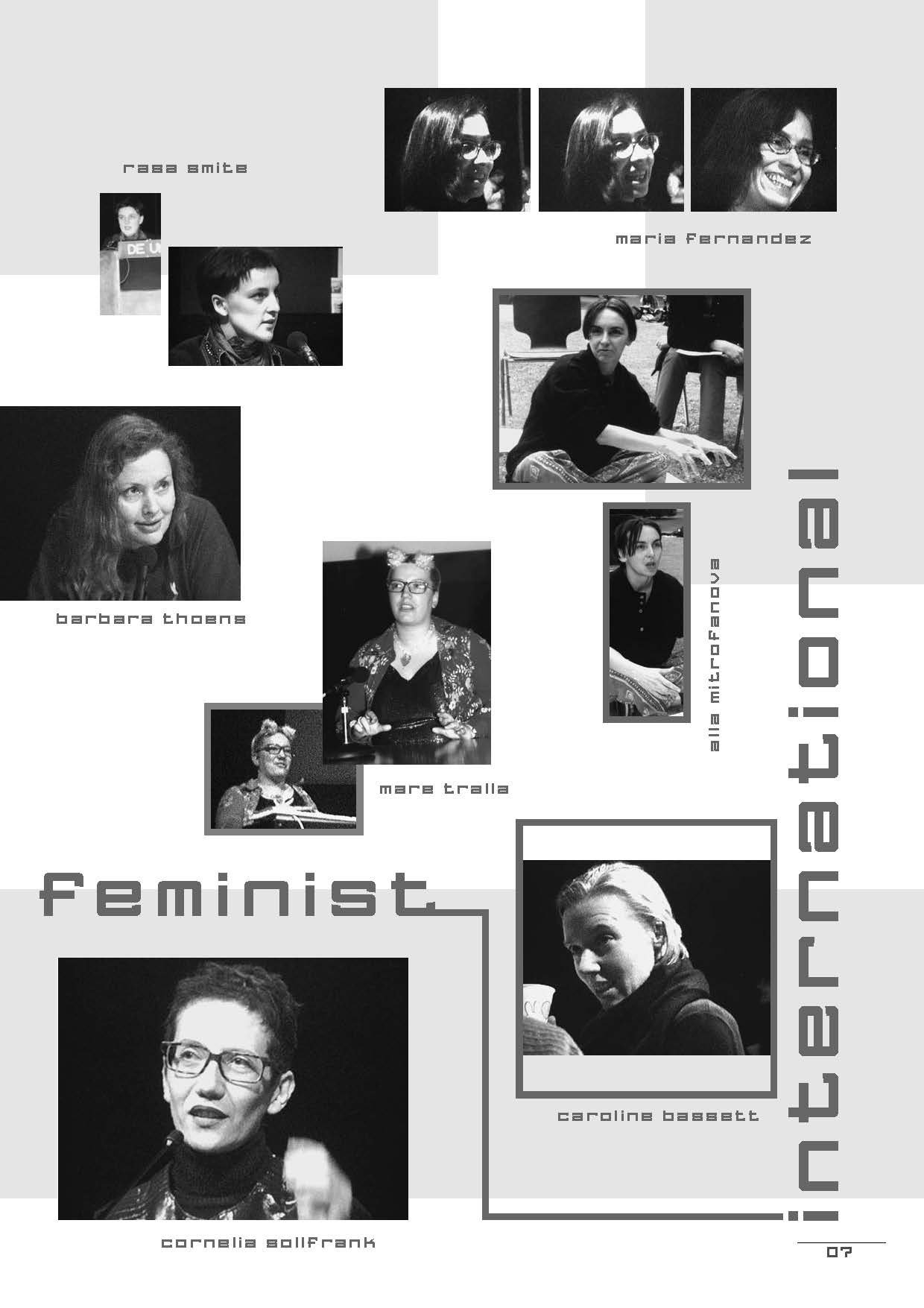
Conference participants, Next Cyberfeminist International Reader, p.7
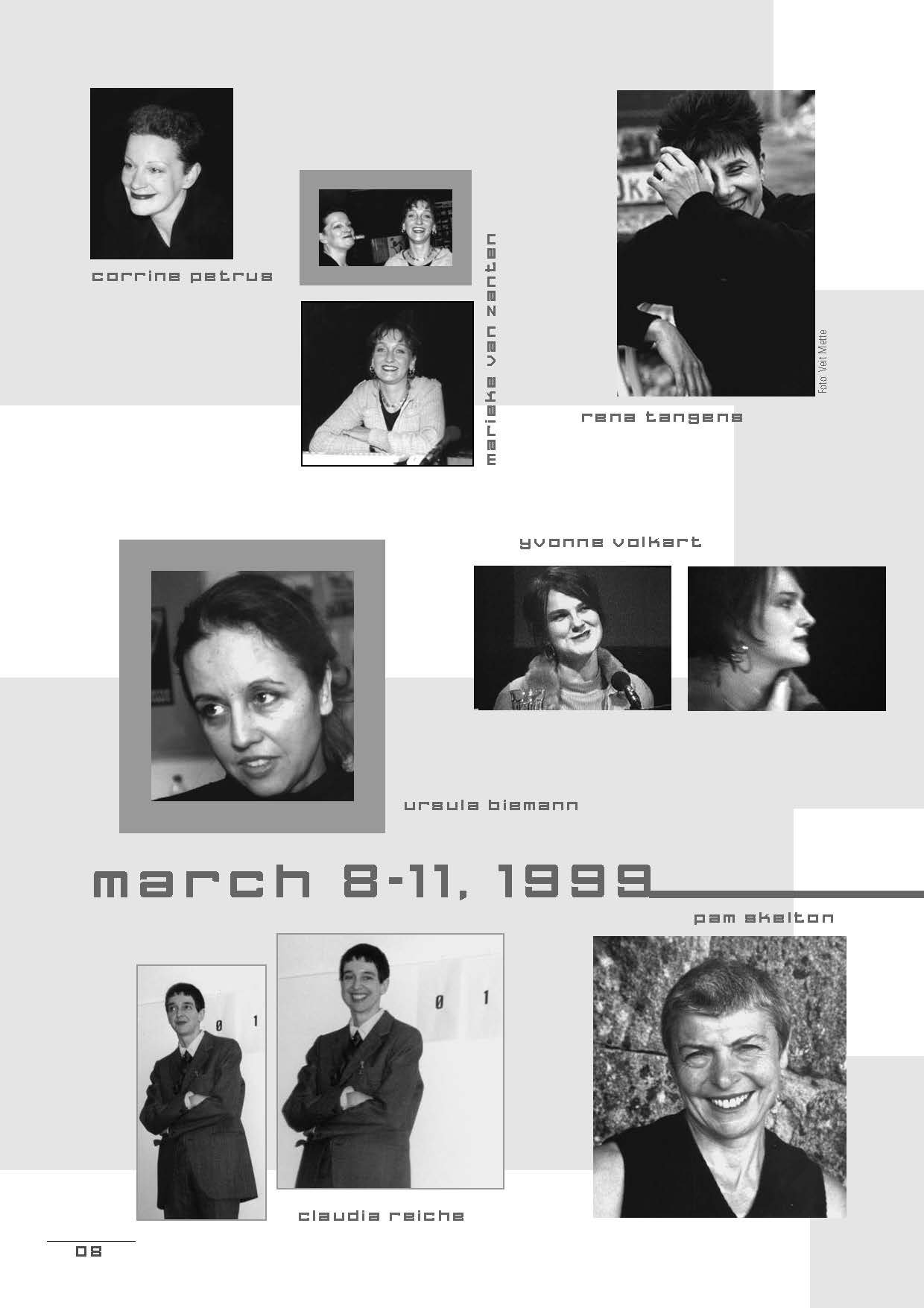
Conference participants, Next Cyberfeminist International Reader, p.8
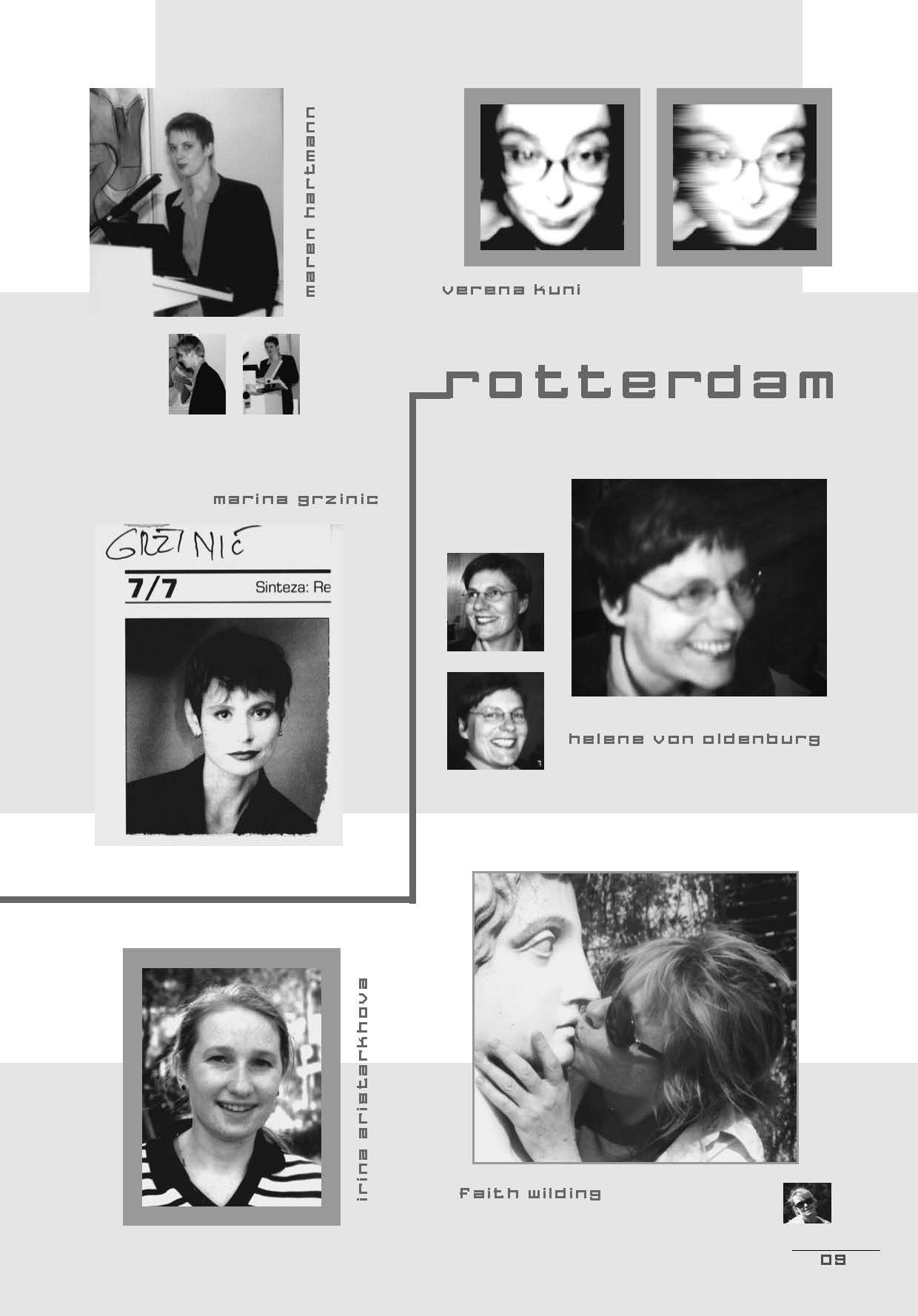
Conference participants, Next Cyberfeminist International Reader, p.9
As for the First Cyberfeminist International, we were seeking women who were interested in contextualizing themselves in the framework of Cyberfeminism at the Rotterdam conference. But this time we suggested certain topics which we felt were crucial to the discussion of Cyberfeminism. The first day began with short introductions and overviews referring to the history and current positions of Cyberfeminism, and the second day was devoted to the subject of “Women Hackers.” Both hacking itself and the paucity of women hackers were the star-ting points for the discussion. We focused on hacking as a way of life, an attitude, a metaphor about subverting the assets of the information age, and hacking, a myth generated and performed by men for men. We looked at the actual practice of hacking and discussed how cyberfeminists can test and appropriate this practice for their purposes.
1999, Old Boys Network, organizers (gathering, De Unie, Rotterdam, Netherlands; Goethe-Institut, Rotterdam, Netherlands, March 8–11, 1999), https://obn.org/obn/obn_pro/nCI/index.htm; excerpt from Cornelia Sollfrank and Yvonne Volkart, “Editorial,” Next Cyberfeminist International, eds. Cornelia Sollfrank and the Old Boys Network (Hamburg: obn: 1999), p. 4
Participants include Alla Mitrofanova, Barbara Rechbach, Barbara Thoens, Caroline Bassett, Claudia Reiche, Cornelia Sollfrank, Corrine Petrus, Faith Wilding, Gudrun Teich, Helene von Oldenburg, Ingrid Hoofd, Irina Aristarkhova, Janine Sack, Josephine Bosma, Mare Tralla, Maren Hartmann, Maria Fernandez, Marieke van Santen, Nat Muller, Pam Skelton, Rachel Baker, Rasa Smite, Rena Tangens, Shu Lea Cheang, Stephanie Wehner, Sunchana Spirovan, Susanne Ackers, Ursula Biemann, Veronica Engler, Vesna Jankovic, and Yvonne Volkart.
https://www.are.na/block/3143833
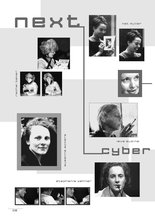
Conference participants, Next Cyberfeminist International Reader, p.6
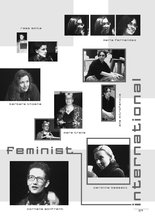
Conference participants, Next Cyberfeminist International Reader, p.7
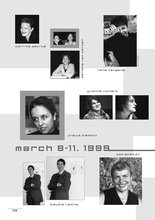
Conference participants, Next Cyberfeminist International Reader, p.8

Conference participants, Next Cyberfeminist International Reader, p.9
(170)
1999
“Third World” Perspectives on Cyberfeminism
Radhika Gajjala
In the presence of Western technology, how and when are we constructed as ignorant? What is the relevance of a Western(ised) cyberfeminism to women in the South? How do we use the contradictions of our lived existence to regain our faith in our Othered socio-cultural identities, while also finding ways to use Western technologies in creating and revitalizing economic structures that are more relevant and user-friendly to people in “Third World” contexts whether in the North or the South? This Viewpoint will critique the notion of “technology as the great equalizer.” […]
“Orientalist” descriptions of the cultures, religions, and societies of the Middle East, Africa, and most of Asia helped to create a colonial discourse that presented these “dark” and “exotic” areas of the world as needing to be “civilized” by the White Man. These descriptions are apparent in the rhetoric of development versus underdevelopment which constructs Southern populations as ignorant, just as narratives of Western technological progress also construct people from the South as ignorant.
1999, Radhika Gajjala, Development in Practice 9, no, 5 (November 1999): pp. 616–619; excerpt p. 616
https://www.are.na/block/7714105
In the presence of Western technology, how and when are we constructed as ignorant? What is the relevance of a Western(ised) cyberfeminism to women in the South? How do we use the contradictions of our lived existence to regain our faith in our Othered socio-cultural identities, while also finding ways to use Western technologies in creating and revitalizing economic structures that are more relevant and user-friendly to people in “Third World” contexts whether in the North or the South? This Viewpoint will critique the notion of “technology as the great equalizer.” […]
“Orientalist” descriptions of the cultures, religions, and societies of the Middle East, Africa, and most of Asia helped to create a colonial discourse that presented these “dark” and “exotic” areas of the world as needing to be “civilized” by the White Man. These descriptions are apparent in the rhetoric of development versus underdevelopment which constructs Southern populations as ignorant, just as narratives of Western technological progress also construct people from the South as ignorant.
1999, Radhika Gajjala, Development in Practice 9, no, 5 (November 1999): pp. 616–619; excerpt p. 616
https://www.are.na/block/7714105
(171)
1999
Bindigrl
Prema Murthy
Bindi is a girl born out of the “exotic” and “erotic.” She is the embodiment of desire for and of the “other”—the desire of wanting to be known, or to know on an intimate level, and at the same time finding safety, even power, in distance, in being mysterious. Liberation in not being easily categorized. […]
Bindigirl is the product of a colonialist mentality. She is aware that she is being watched, and asks for something in return for being looked at, to mimic the symbiotic relationship that exists in the “real” world between the colonized and the colonizer. Not only does a desire to conquer the Other exist in colonialism, but a longing by the Other for the conqueror and his or her (capitalist) ideals exists as well. This pattern of desire and longing must be re-evaluated before we can move on into a post-colonial territory. […]
Bindi is my avatar. Not only is she her alias in the virtual world, but a play on the word, which in India means an incarnation of a Hindu deity, the embodiment of an archetype. In this case she is the embodiment of the “goddess/whore” archetype which has historically been used to simplify the identity of women and their roles of power in society. Bindi is neither here nor there but exists in screenal space. She is somewhere between a question and an answer.
1999, Prema Murthy, http://www.thing.net/~bindigrl/index_refresh.html; excerpt from Prema Murthy, interview by Eric Baudelaire, “Bindigirl—Interview with Prema Murthy,” Rhizome, https://rhizome.org/community/41433/
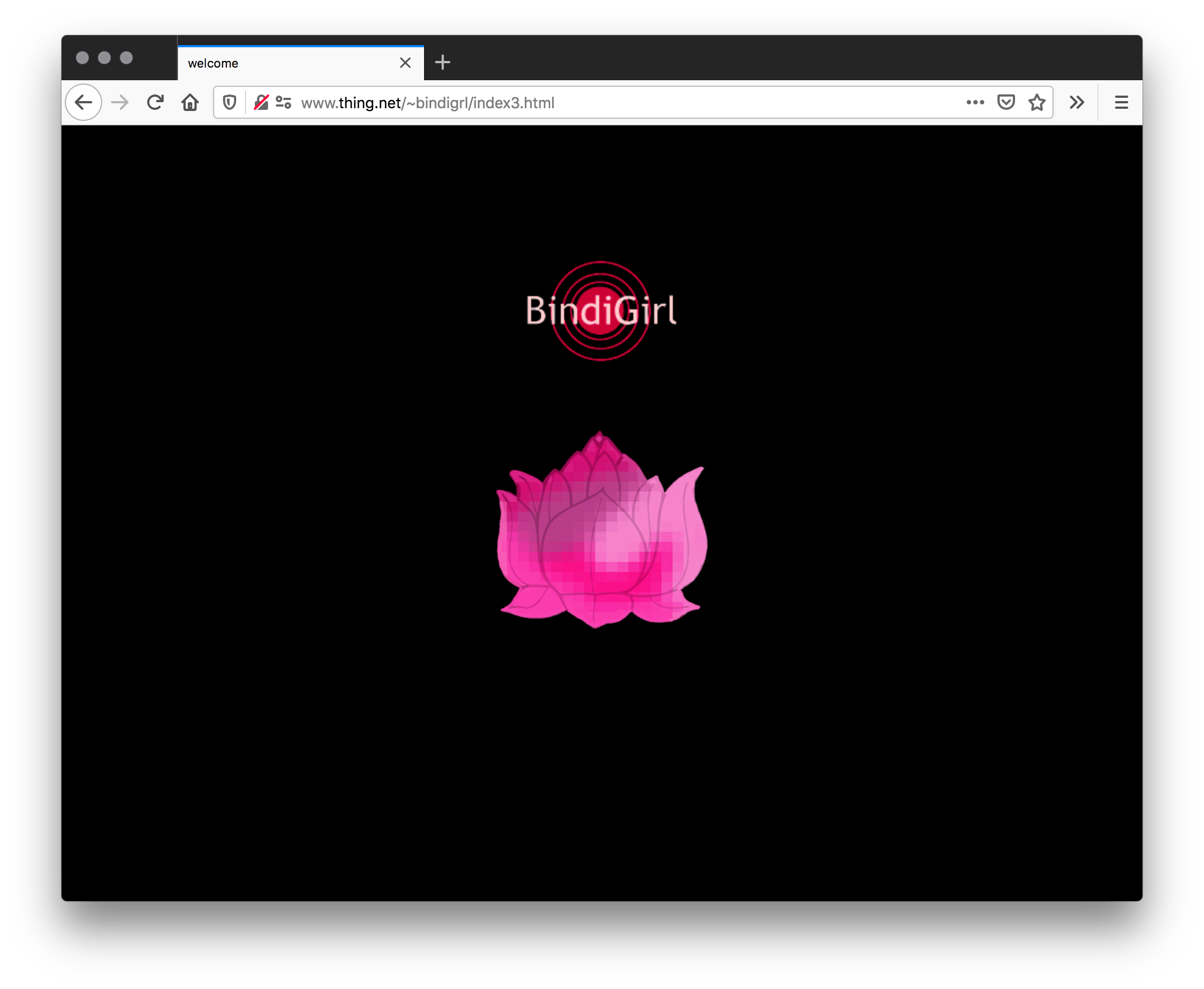
Screenshot, 2020, Firefox v76.0.1 on Mac OS 10.13.3; http://www.thing.net/~bindigrl/index3.html

Artifact from http://www.thing.net/~bindigrl/index3.html

Artifact from http://www.thing.net/~bindigrl/index3.html
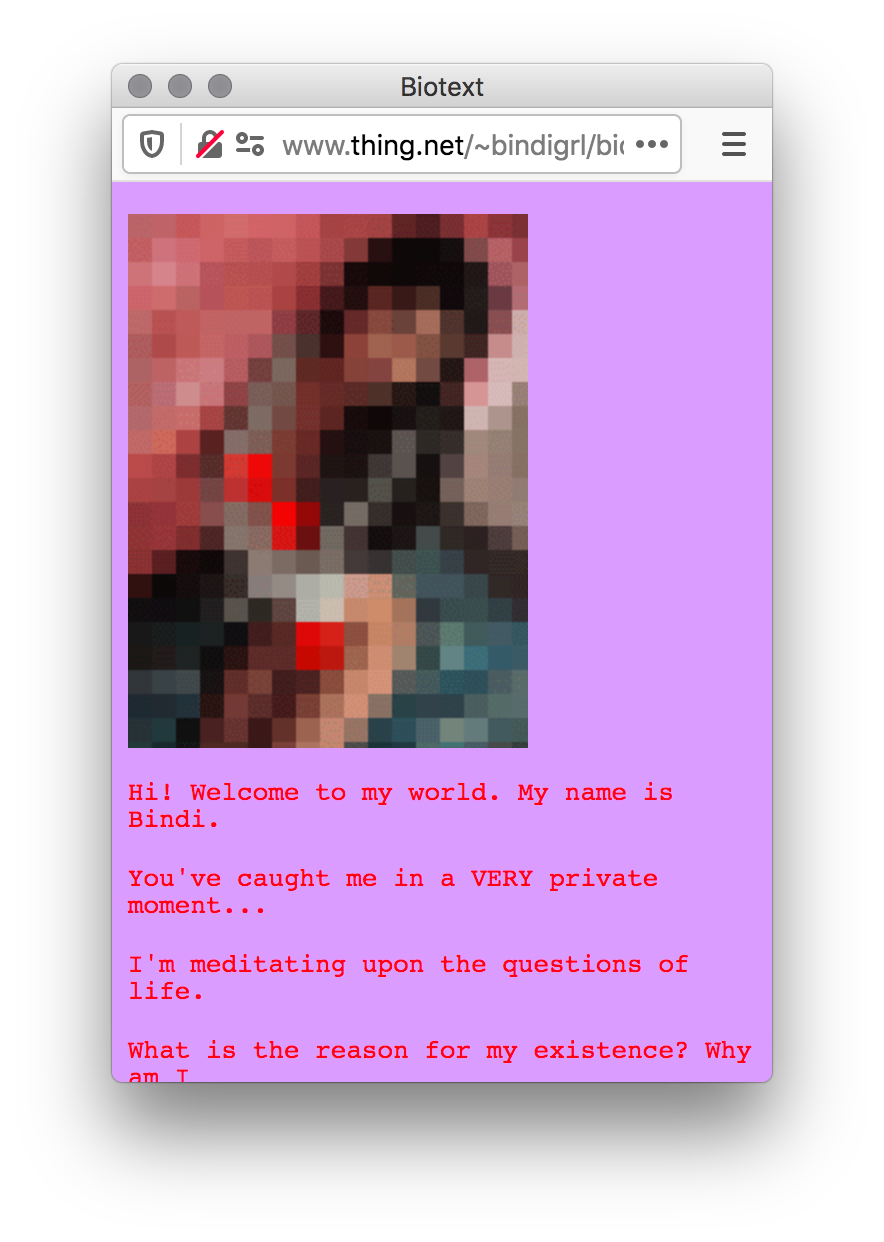
Screenshot, 2020, Firefox v76.0.1 on Mac OS 10.13.3; www.thing.net/~bindigrl/bio/biotext.html

Image from www.thing.net/~bindigrl/bio/biotext.html
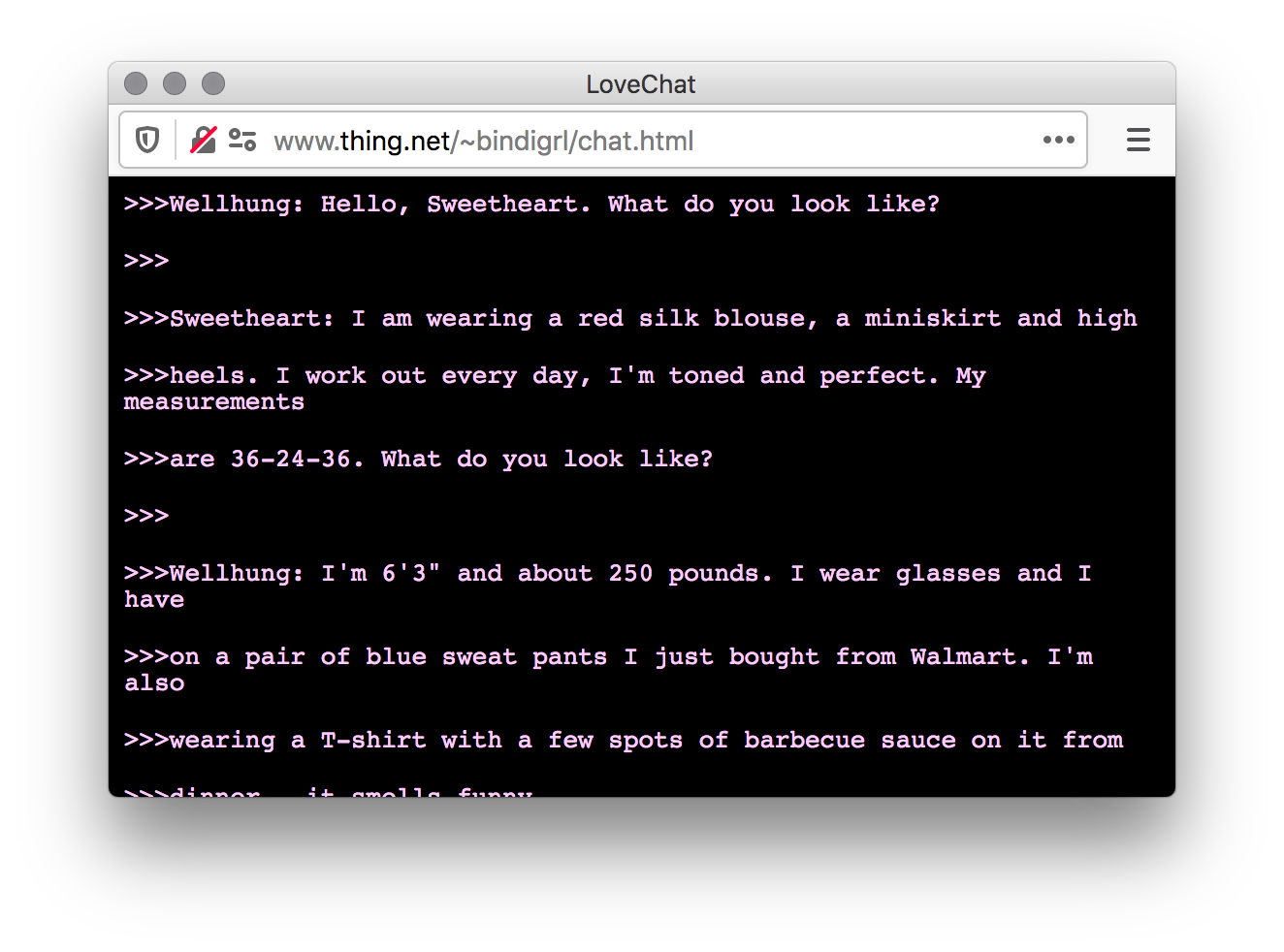
Screenshot, 2020, Firefox v76.0.1 on Mac OS 10.13.3; www.thing.net/~bindigrl/chat.html

Screenshot, 2020, Firefox v76.0.1 on Mac OS 10.13.3; www.thing.net/~bindigrl/harem/harem.html

Screenshot, 2020, Firefox v76.0.1 on Mac OS 10.13.3; http://www.thing.net/~bindigrl/pixxx/001xxx.html

Screenshot, 2020, Firefox v76.0.1 on Mac OS 10.13.3; http://www.thing.net/~bindigrl/pixxx/004xxx.html
Bindi is a girl born out of the “exotic” and “erotic.” She is the embodiment of desire for and of the “other”—the desire of wanting to be known, or to know on an intimate level, and at the same time finding safety, even power, in distance, in being mysterious. Liberation in not being easily categorized. […]
Bindigirl is the product of a colonialist mentality. She is aware that she is being watched, and asks for something in return for being looked at, to mimic the symbiotic relationship that exists in the “real” world between the colonized and the colonizer. Not only does a desire to conquer the Other exist in colonialism, but a longing by the Other for the conqueror and his or her (capitalist) ideals exists as well. This pattern of desire and longing must be re-evaluated before we can move on into a post-colonial territory. […]
Bindi is my avatar. Not only is she her alias in the virtual world, but a play on the word, which in India means an incarnation of a Hindu deity, the embodiment of an archetype. In this case she is the embodiment of the “goddess/whore” archetype which has historically been used to simplify the identity of women and their roles of power in society. Bindi is neither here nor there but exists in screenal space. She is somewhere between a question and an answer.
1999, Prema Murthy, http://www.thing.net/~bindigrl/index_refresh.html; excerpt from Prema Murthy, interview by Eric Baudelaire, “Bindigirl—Interview with Prema Murthy,” Rhizome, https://rhizome.org/community/41433/

Screenshot, 2020, Firefox v76.0.1 on Mac OS 10.13.3; http://www.thing.net/~bindigrl/index3.html

Artifact from http://www.thing.net/~bindigrl/index3.html

Artifact from http://www.thing.net/~bindigrl/index3.html
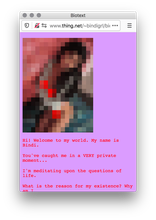
Screenshot, 2020, Firefox v76.0.1 on Mac OS 10.13.3; www.thing.net/~bindigrl/bio/biotext.html

Image from www.thing.net/~bindigrl/bio/biotext.html
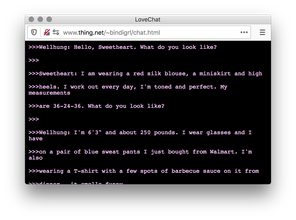
Screenshot, 2020, Firefox v76.0.1 on Mac OS 10.13.3; www.thing.net/~bindigrl/chat.html

Screenshot, 2020, Firefox v76.0.1 on Mac OS 10.13.3; www.thing.net/~bindigrl/harem/harem.html

Screenshot, 2020, Firefox v76.0.1 on Mac OS 10.13.3; http://www.thing.net/~bindigrl/pixxx/001xxx.html

Screenshot, 2020, Firefox v76.0.1 on Mac OS 10.13.3; http://www.thing.net/~bindigrl/pixxx/004xxx.html
(172)
1999
skinonskinonskin
Auriea Harvey, Michaël Samyn
skinonskinonskin is a series of digital love letters sent between artists Auriea Harvey and Michaël Samyn. The two artists met in 1999, and began a romance by exchanging interactive web pages, in Flash, audio, text, and images. Originally sharing their “letters” solely with one another, Harvey and Samyn later made them available to paid subscribers as an online artwork. skinonskinonskin is now out from behind its paywall and available on the public web for its launch as part of [Rhizome’s] Net Art Anthology.
As their relationship grew, Harvey merged her web practice, Entropy8, with Samyn’s Zuper! to create the collaborative entity Entropy8Zuper!. In skinonskinonskin, artistic collaboration and love are shown to be closely related, two facets of the same fundamental question of how to relate to the other. The work is a complex portrait of an artistic and romantic relationship that shows that online intimacy is as deeply felt, embodied, and full of risk and reward as any other form.
1999, Auriea Harvey and Michaël Samyn; excerpt from Rhizome, “skinonskinonskin,” Net Art Anthology, https://anthology.rhizome.org/skinonskinonskin
https://sites.rhizome.org/anthology/skinonskinonskin.html
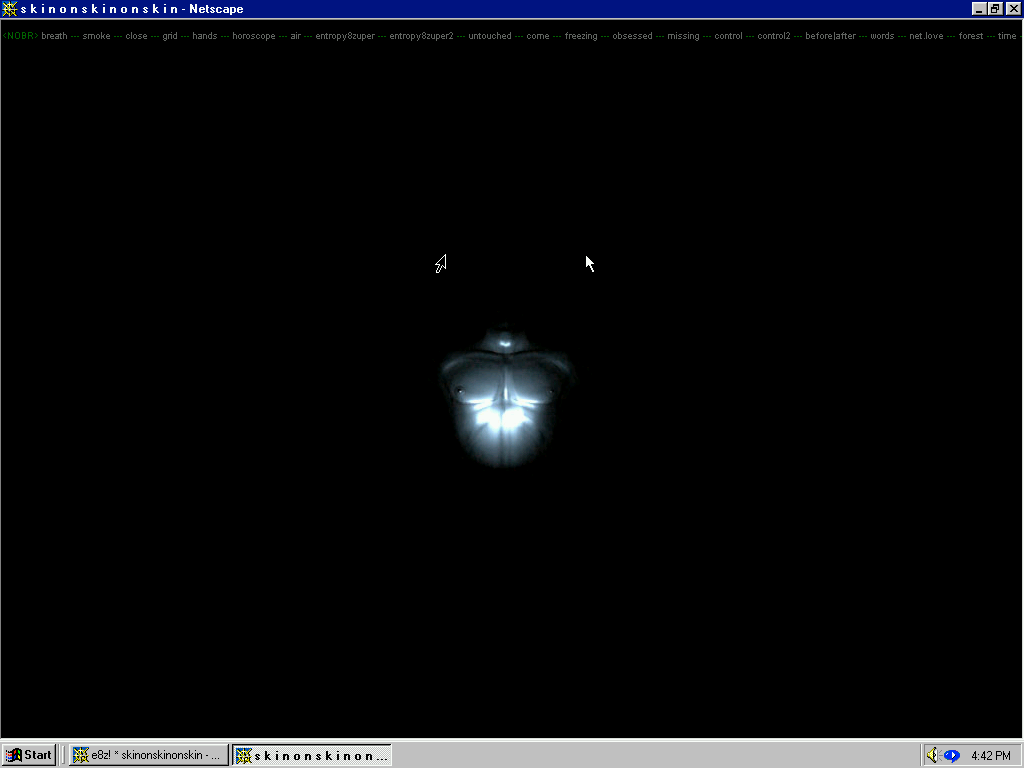
“breath.html, Entropy8Zuper!” image from https://anthology.rhizome.org/skinonskinonskin
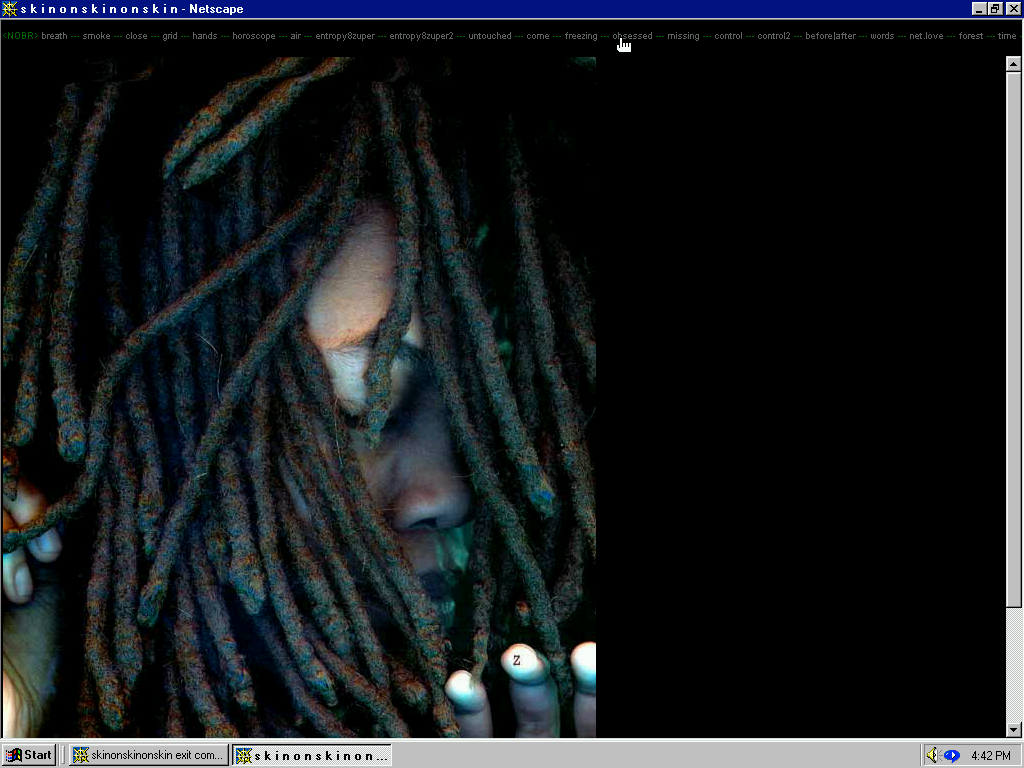
“‘freezing,’ from skinonskinonskin”, image from https://anthology.rhizome.org/skinonskinonskin
skinonskinonskin is a series of digital love letters sent between artists Auriea Harvey and Michaël Samyn. The two artists met in 1999, and began a romance by exchanging interactive web pages, in Flash, audio, text, and images. Originally sharing their “letters” solely with one another, Harvey and Samyn later made them available to paid subscribers as an online artwork. skinonskinonskin is now out from behind its paywall and available on the public web for its launch as part of [Rhizome’s] Net Art Anthology.
As their relationship grew, Harvey merged her web practice, Entropy8, with Samyn’s Zuper! to create the collaborative entity Entropy8Zuper!. In skinonskinonskin, artistic collaboration and love are shown to be closely related, two facets of the same fundamental question of how to relate to the other. The work is a complex portrait of an artistic and romantic relationship that shows that online intimacy is as deeply felt, embodied, and full of risk and reward as any other form.
1999, Auriea Harvey and Michaël Samyn; excerpt from Rhizome, “skinonskinonskin,” Net Art Anthology, https://anthology.rhizome.org/skinonskinonskin
https://sites.rhizome.org/anthology/skinonskinonskin.html
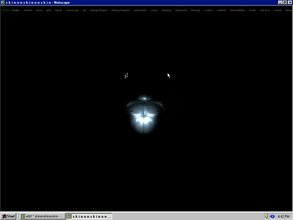
“breath.html, Entropy8Zuper!” image from https://anthology.rhizome.org/skinonskinonskin
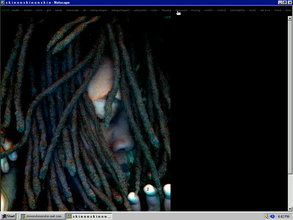
“‘freezing,’ from skinonskinonskin”, image from https://anthology.rhizome.org/skinonskinonskin
(173)
1999
Racialized Fantasies on the Internet
Christina Elizabeth Sharpe
And yet, our imagined possibilities in some instances constitute an intervention in precisely these power relations. People and politics are located and regulated in terms of authority and authenticity on the Internet, and while new imaginings, I argue, are crucial, it is certainly not as simple as “if you build it, they will come.” […] In cyberspace, we find both the limits and the expansions of our imaginations.
I remain interested in what is at stake in certain societal reproductions. What is revealed in the fantasies of black people and the personas we create? In a culture of assimilation, what might it mean to disavow one racial identity in the performance of another? Does the Net’s capacity to render race invisible reproduce histories of racial invisibility? At the very least, there is the risk that some racialized performances might reproduce the regulatory effects that compel assimilation. There is a vigilance about the monitoring of bodies on the Internet, and people of color are once again afraid of being made to disappear.
1999, Christina Elizabeth Sharpe, in “Institutions, Regulation, & Social Control,” eds. Christine Di Stefano, Priscilla Wald, and Judith Weisenfeld, special issue, Signs: Journal of Women in Culture and Society 24, no. 4 (Summer 1999): pp. 1089–1096; excerpt p. 1093
https://www.jstor.org/stable/3175605 https://www.are.na/block/7977679
And yet, our imagined possibilities in some instances constitute an intervention in precisely these power relations. People and politics are located and regulated in terms of authority and authenticity on the Internet, and while new imaginings, I argue, are crucial, it is certainly not as simple as “if you build it, they will come.” […] In cyberspace, we find both the limits and the expansions of our imaginations.
I remain interested in what is at stake in certain societal reproductions. What is revealed in the fantasies of black people and the personas we create? In a culture of assimilation, what might it mean to disavow one racial identity in the performance of another? Does the Net’s capacity to render race invisible reproduce histories of racial invisibility? At the very least, there is the risk that some racialized performances might reproduce the regulatory effects that compel assimilation. There is a vigilance about the monitoring of bodies on the Internet, and people of color are once again afraid of being made to disappear.
1999, Christina Elizabeth Sharpe, in “Institutions, Regulation, & Social Control,” eds. Christine Di Stefano, Priscilla Wald, and Judith Weisenfeld, special issue, Signs: Journal of Women in Culture and Society 24, no. 4 (Summer 1999): pp. 1089–1096; excerpt p. 1093
https://www.jstor.org/stable/3175605 https://www.are.na/block/7977679
(174)
1999
Cyberfeminism and Education in the Era of the Exile of Spirit
Ilan Gur-Ze’ev
Within cyberfeminism the adorers of cyberspace are united in their optimism about the prospects of educational emancipatory elements in cyberspace. They share a broader cyberoptimism which invisions cyberspace as an arena where “all voices are equal” and marginal groups raise their “voice” and participate in a radical democratic environment. It is a space where “power becomes imaginary” since “in simcult the essential is nothing and nothing is essential,” and “the death of the political” finally comes about. Within this process “women do become more important … as machines get more autonomous, so do women. I think women—once they start to make the connection—feel more comfortable with the technology. And really the notion that it is masculine is a convenient myth sustained by the present power structures. This myth is increasingly irrelevant and is an untrue picture of what’s occurring.”
1999, Ilan Gur-Ze’ev, Educational Theory 49, no. 4 (Dec 1999), pp. 437–455; excerpt, p. 438
https://www.are.na/block/7988414 https://web.archive.org/web/20020308001035/construct.haifa.ac.il/~ilangz/Cyberfeminism.html
Within cyberfeminism the adorers of cyberspace are united in their optimism about the prospects of educational emancipatory elements in cyberspace. They share a broader cyberoptimism which invisions cyberspace as an arena where “all voices are equal” and marginal groups raise their “voice” and participate in a radical democratic environment. It is a space where “power becomes imaginary” since “in simcult the essential is nothing and nothing is essential,” and “the death of the political” finally comes about. Within this process “women do become more important … as machines get more autonomous, so do women. I think women—once they start to make the connection—feel more comfortable with the technology. And really the notion that it is masculine is a convenient myth sustained by the present power structures. This myth is increasingly irrelevant and is an untrue picture of what’s occurring.”
1999, Ilan Gur-Ze’ev, Educational Theory 49, no. 4 (Dec 1999), pp. 437–455; excerpt, p. 438
https://www.are.na/block/7988414 https://web.archive.org/web/20020308001035/construct.haifa.ac.il/~ilangz/Cyberfeminism.html
(175)
1999
Distance
Tina LaPorta
Ready to make a connection, she logs on
Authenticating Remote Access.....
Her social network is dispersed, connecting through wires
Her desire to communicate to an other is met on-line
Each encounter occurs in real-time
Interaction is immediate
Leaving traces on her screen
http://turbulence.org/Works/Distance/
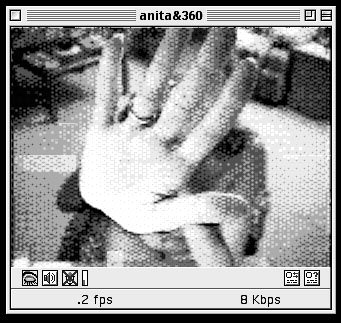
artifact from http://turbulence.org/Works/Distance/
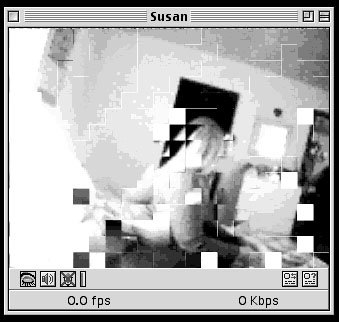
“Ready to make a connection, she logs on,” artifact from http://turbulence.org/Works/Distance/connect.html
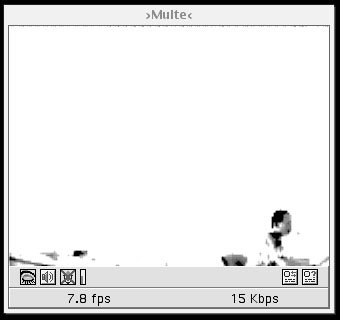
“Authenticating Remote Access...”, artifact from http://turbulence.org/Works/Distance/remote.html
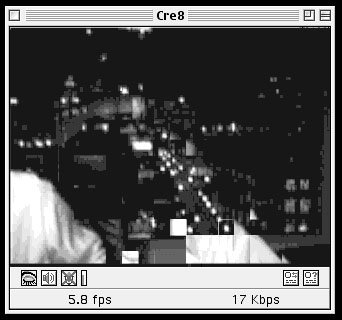
“Her social network is dispersed, connecting through wires,” artifact from http://turbulence.org/Works/Distance/wire.html
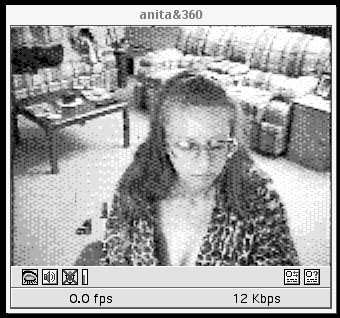
“Her desire to communicate to an other is met on-line,” artifact from http://turbulence.org/Works/Distance/desire.html
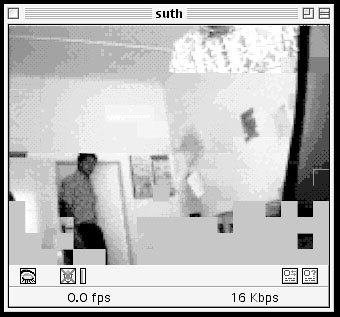
“Each encounter occurs in real-time,” artifact from http://turbulence.org/Works/Distance/time.html
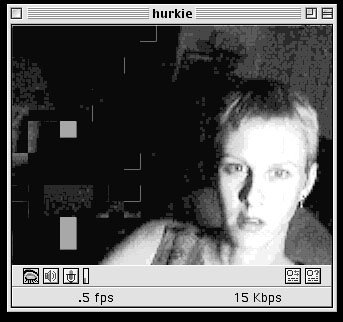
“Interaction is immediate,” artifact from http://turbulence.org/Works/Distance/mediate.html
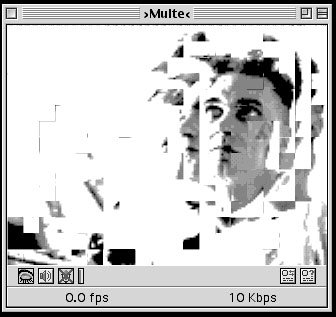
“Leaving traces on her screen,” artifact from http://turbulence.org/Works/Distance/fps.html
Ready to make a connection, she logs on
Authenticating Remote Access.....
Her social network is dispersed, connecting through wires
Her desire to communicate to an other is met on-line
Each encounter occurs in real-time
Interaction is immediate
Leaving traces on her screen
http://turbulence.org/Works/Distance/
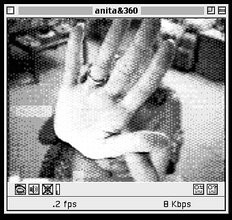
artifact from http://turbulence.org/Works/Distance/
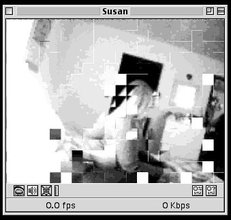
“Ready to make a connection, she logs on,” artifact from http://turbulence.org/Works/Distance/connect.html
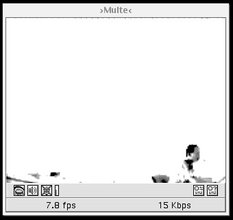
“Authenticating Remote Access...”, artifact from http://turbulence.org/Works/Distance/remote.html
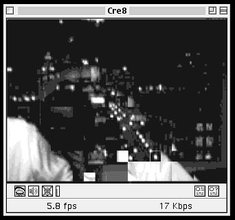
“Her social network is dispersed, connecting through wires,” artifact from http://turbulence.org/Works/Distance/wire.html
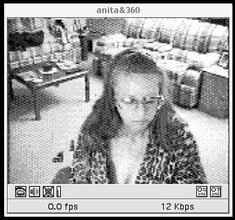
“Her desire to communicate to an other is met on-line,” artifact from http://turbulence.org/Works/Distance/desire.html

“Each encounter occurs in real-time,” artifact from http://turbulence.org/Works/Distance/time.html

“Interaction is immediate,” artifact from http://turbulence.org/Works/Distance/mediate.html
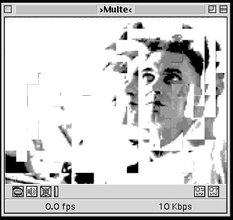
“Leaving traces on her screen,” artifact from http://turbulence.org/Works/Distance/fps.html
(176)
1999
Mars Patent
Helene von Oldenburg, Claudia Reiche
The first interplanetarian Exhibition Space on Mars
Enter and your eyes will be traveling at the speed of light to an interplanetarian experience
Enter and show you care: Give culture a second chance
Enter and become part of the millennium project—THE MARS PATENT
One small step for mankind, but a giant step for you!
1999, Helene von Oldenburg and Claudia Reiche, http://www.mars-patent.org/
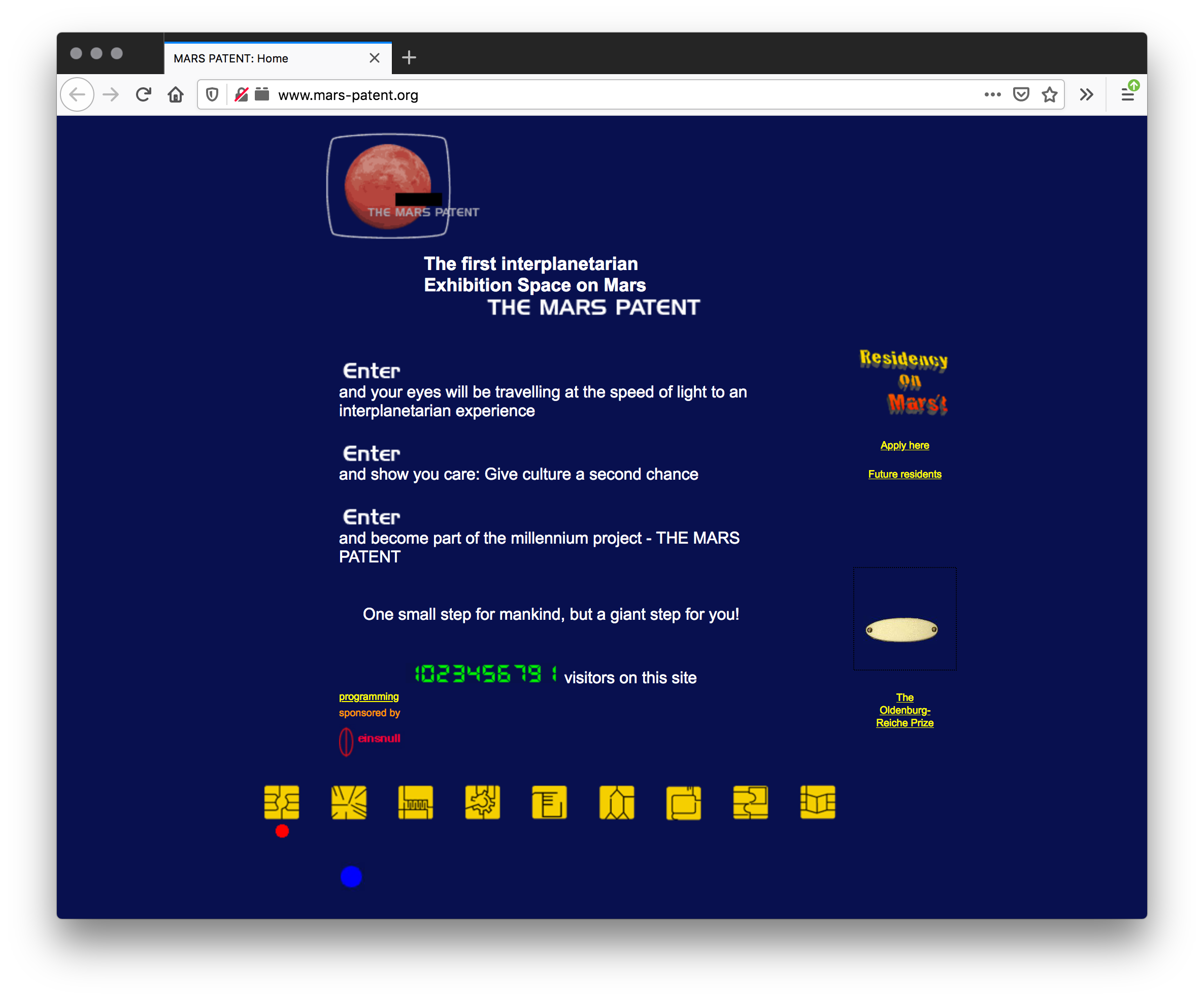
Screenshot, 2020, Firefox v76.0.1 on Mac OS 10.13.3; http://www.mars-patent.org/
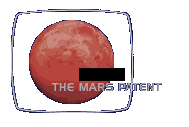
artifact from http://www.mars-patent.org/

artifact from http://www.mars-patent.org/
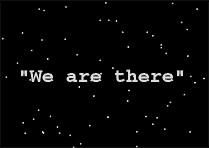
artifact from http://www.mars-patent.org/welcome/welcome.htm

artifact from http://www.mars-patent.org/mes/mes.htm
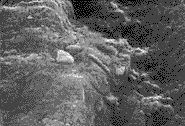
artifact from http://www.mars-patent.org/hrm/hrm.htm
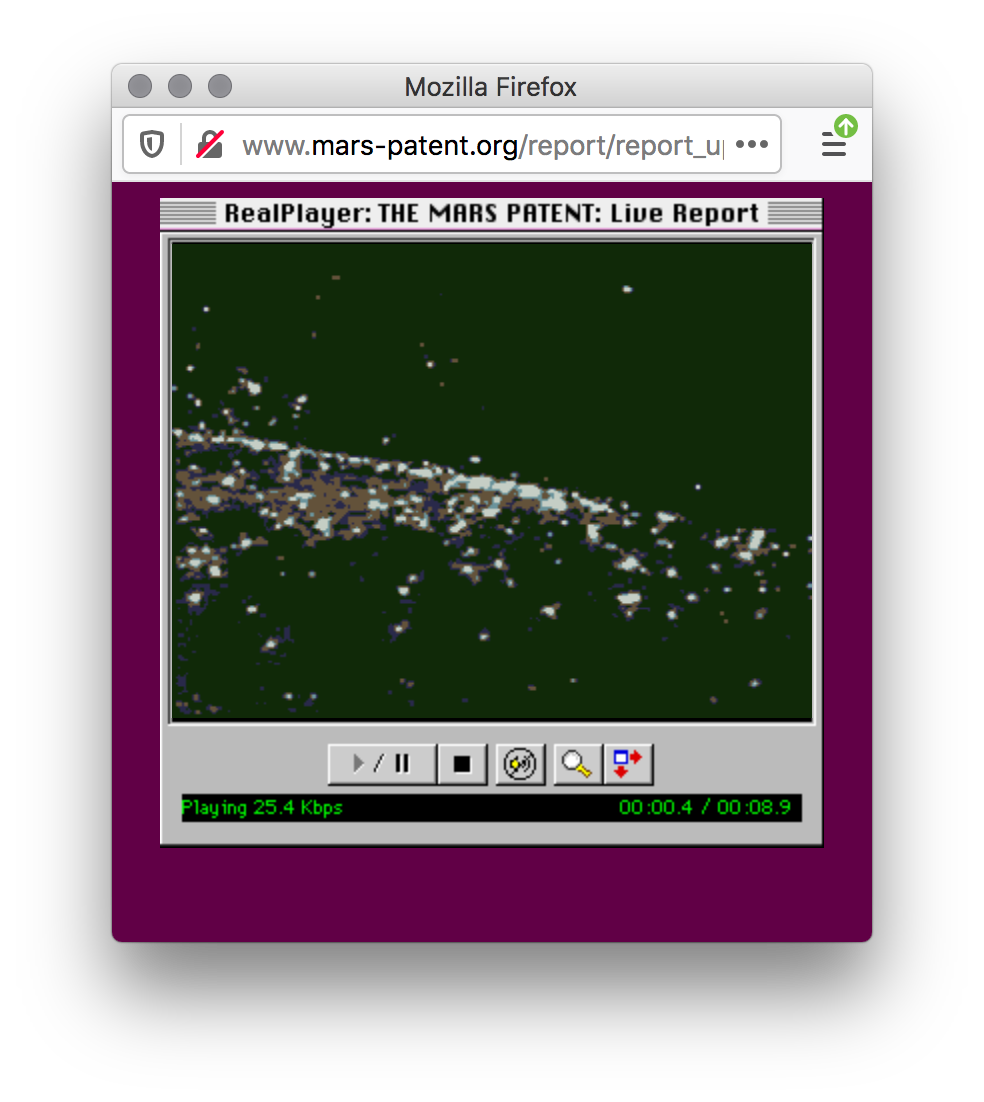
“Genderisitors on Mars by Beate Zurwehme,” Screenshot, 2020, Firefox v76.0.1 on Mac OS 10.13.3; www.mars-patent.org/report/report_up.htm
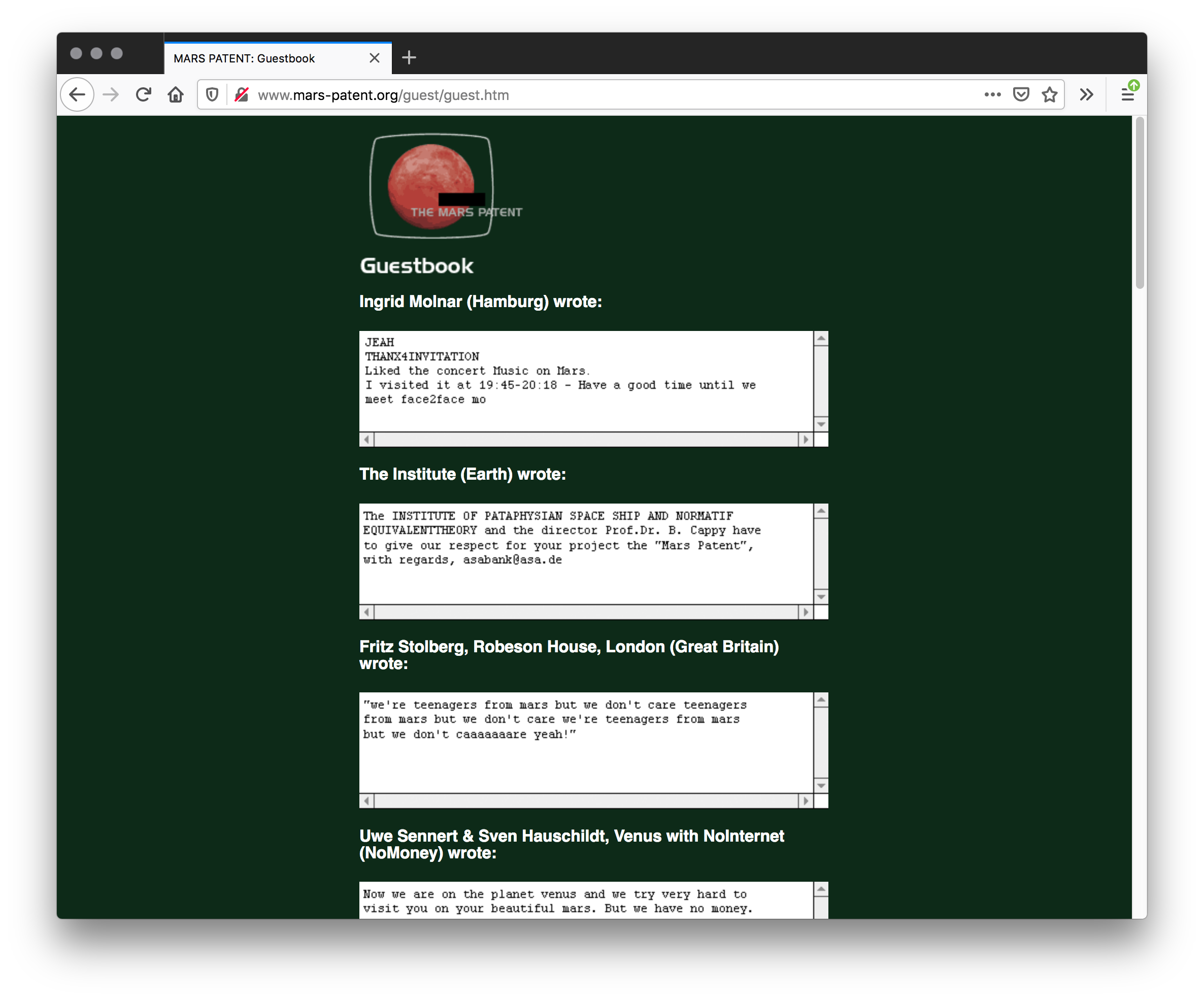
“Guestbook,” Screenshot, 2020, Firefox v76.0.1 on Mac OS 10.13.3; http://www.mars-patent.org/guest/guest.htm
The first interplanetarian Exhibition Space on Mars
Enter and your eyes will be traveling at the speed of light to an interplanetarian experience
Enter and show you care: Give culture a second chance
Enter and become part of the millennium project—THE MARS PATENT
One small step for mankind, but a giant step for you!
1999, Helene von Oldenburg and Claudia Reiche, http://www.mars-patent.org/
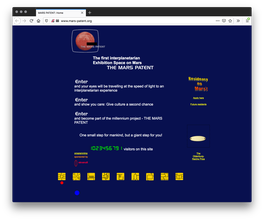
Screenshot, 2020, Firefox v76.0.1 on Mac OS 10.13.3; http://www.mars-patent.org/
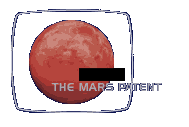
artifact from http://www.mars-patent.org/

artifact from http://www.mars-patent.org/
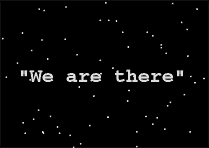
artifact from http://www.mars-patent.org/welcome/welcome.htm

artifact from http://www.mars-patent.org/mes/mes.htm
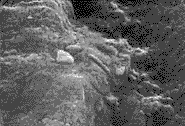
artifact from http://www.mars-patent.org/hrm/hrm.htm
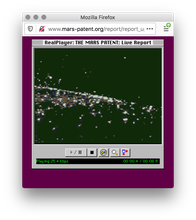
“Genderisitors on Mars by Beate Zurwehme,” Screenshot, 2020, Firefox v76.0.1 on Mac OS 10.13.3; www.mars-patent.org/report/report_up.htm
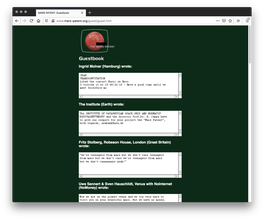
“Guestbook,” Screenshot, 2020, Firefox v76.0.1 on Mac OS 10.13.3; http://www.mars-patent.org/guest/guest.htm
(177)
1999
Woman Hackers
Cornelia Sollfrank
“While this opinion contains a generalisation about men and women and refers to the biological sex (x) of a person, it also relates to the social construct of gender, and therefore recalls the feminist arguments of the 70s. But obviously, girls and boys are still brought up in different ways, and develop different preferences. It is necessary to face this fact and the resulting conflicts in order to bridge the gap between social and political realities and wishful cyberfeminist thinking.
I am not assuming that women and technology necessarily have as special and as close a relationship as certain cyberfeminists proclaim. My clitoris does not have a direct line to the Matrix—unfortunately. [page "Cyberfeminist Manifesto for the 21st Century" not found] Such rhetoric mystifies technology and misrepresents the daily life of the female computer worker. (x) The simple fact is that most women prefer to spend their lives doing other things than programming fanatically or exploring the depths of the net. And even within the cyberfeminist community, there are only a few computer professionals, and fewer nerds.” —Cornelia Sollfrank, first published in Next Cyberfeminist International (x)
https://www.obn.org/hackers/text1.htm

artifact from https://www.obn.org/hackers/text.htm

artifact from https://www.obn.org/hackers/text1.htm

artifact from https://www.obn.org/hackers/text1.htm
“While this opinion contains a generalisation about men and women and refers to the biological sex (x) of a person, it also relates to the social construct of gender, and therefore recalls the feminist arguments of the 70s. But obviously, girls and boys are still brought up in different ways, and develop different preferences. It is necessary to face this fact and the resulting conflicts in order to bridge the gap between social and political realities and wishful cyberfeminist thinking.
I am not assuming that women and technology necessarily have as special and as close a relationship as certain cyberfeminists proclaim. My clitoris does not have a direct line to the Matrix—unfortunately. [page "Cyberfeminist Manifesto for the 21st Century" not found] Such rhetoric mystifies technology and misrepresents the daily life of the female computer worker. (x) The simple fact is that most women prefer to spend their lives doing other things than programming fanatically or exploring the depths of the net. And even within the cyberfeminist community, there are only a few computer professionals, and fewer nerds.” —Cornelia Sollfrank, first published in Next Cyberfeminist International (x)
https://www.obn.org/hackers/text1.htm

artifact from https://www.obn.org/hackers/text.htm

artifact from https://www.obn.org/hackers/text1.htm

artifact from https://www.obn.org/hackers/text1.htm
(178)
1999
How to Become a Cyberfeminist
Alla Mitrofanova
It’s very simple. First of all you should set up a careful dialogue with your body. The body desires a great deal, being a receptacle of various existential opportunities. The body itself is invisible, it is immanent. We recognize it gradually by its development—the way it has presented itself is the way it is going to be. As a container of opportunities it is rooted in sexuality. In a different place, on the other hand, not in the body but in the culture (bodily culture and the culture of the epoch and the society) there lies an inventory of one’s possible stereotypes—whether images or bodily dynamics (informations). Information is not a structure, not identity, not a gender—it is a catalogue of possible expressions. Our goal is to keep the distance between the body as opportunity and the body as representation. Only then we have freedom to choose either a subject matter or a symbol or an image for self-identification to meet the conditions as well as requirements of the moment.
1999, Alla Mitrofanova, in Next Cyberfeminist International, eds. Cornelia Sollfrank and the Old Boys Network (Hamburg: obn: 1999), p. 12; referred by Marina Gržinić and Boryana Rossa
http://www.artwarez.org/fileadmin/artwarez/pdf/obn-Nextreader.pdf
It’s very simple. First of all you should set up a careful dialogue with your body. The body desires a great deal, being a receptacle of various existential opportunities. The body itself is invisible, it is immanent. We recognize it gradually by its development—the way it has presented itself is the way it is going to be. As a container of opportunities it is rooted in sexuality. In a different place, on the other hand, not in the body but in the culture (bodily culture and the culture of the epoch and the society) there lies an inventory of one’s possible stereotypes—whether images or bodily dynamics (informations). Information is not a structure, not identity, not a gender—it is a catalogue of possible expressions. Our goal is to keep the distance between the body as opportunity and the body as representation. Only then we have freedom to choose either a subject matter or a symbol or an image for self-identification to meet the conditions as well as requirements of the moment.
1999, Alla Mitrofanova, in Next Cyberfeminist International, eds. Cornelia Sollfrank and the Old Boys Network (Hamburg: obn: 1999), p. 12; referred by Marina Gržinić and Boryana Rossa
http://www.artwarez.org/fileadmin/artwarez/pdf/obn-Nextreader.pdf
(179)
1999
Cyberbodies 2—Or More Stories about the Political of the Cyberspace
Marina Grzinic
The mass of new technology today is designed to produce completely shiny, glossy images. […] To put the body back in the image, maybe we should look to the possibilities of scratches and random dirt effects and not just to glossy and shiny surfaces. Maybe it is only possible to realize a physical body, the senses, the moment when our body stirs into action, through mistakes and errors in the image.
Mistakes in the image are like a fingerprint on the film, a scratch or scars on the skin, these are the evidence of existence of the image. To make a mistake is to find a place in time. A mistake is like a wound in the image, it is like an error in the body. This is a situation of producing a gap, a hiatus, where we can insert not only a proper body, but an interpretation. You can actually point with your finger and say: Here, in this mistake, there is something beneath. In the history of psychiatry, such a mistake is the symptom.
1999, Marina Gržinić, in Next Cyberfeminist International, eds. Cornelia Sollfrank and the Old Boys Network (Hamburg: obn: 1999), pp. 91–93; excerpt p. 92; referred by Marina Gržinić and Boryana Rossa
http://www.artwarez.org/fileadmin/artwarez/pdf/obn-Nextreader.pdf
The mass of new technology today is designed to produce completely shiny, glossy images. […] To put the body back in the image, maybe we should look to the possibilities of scratches and random dirt effects and not just to glossy and shiny surfaces. Maybe it is only possible to realize a physical body, the senses, the moment when our body stirs into action, through mistakes and errors in the image.
Mistakes in the image are like a fingerprint on the film, a scratch or scars on the skin, these are the evidence of existence of the image. To make a mistake is to find a place in time. A mistake is like a wound in the image, it is like an error in the body. This is a situation of producing a gap, a hiatus, where we can insert not only a proper body, but an interpretation. You can actually point with your finger and say: Here, in this mistake, there is something beneath. In the history of psychiatry, such a mistake is the symptom.
1999, Marina Gržinić, in Next Cyberfeminist International, eds. Cornelia Sollfrank and the Old Boys Network (Hamburg: obn: 1999), pp. 91–93; excerpt p. 92; referred by Marina Gržinić and Boryana Rossa
http://www.artwarez.org/fileadmin/artwarez/pdf/obn-Nextreader.pdf
(180)
1999
Cybertides of Feminisms
Mare Tralla, Iliyana Nedkova
Mare Tralla: There is definitely more politics on their plate now. Before, the politics was more of a hype: cyberfuture is feminine. We may probably wave around the same slogans again but at least with much more wisdom, humor and self-irony. It is probably happening already for I can’t claim that I read every piece of text that deals with cyber-feminisms. Perhaps, from an Estonian perspective, I think myself more of a feminist than a cyberfeminist, which may outrage some of the Western feminists. Yet, I need to respond to my own internal connections with my first language culture. I still consider the word feminism keeps more protest and backlash even though it is overused and has a mountain of bad meanings but it is still more powerful than the word cyberfeminism—for me.
1999, Mare Tralla and Iliyana Nedkova, in Next Cyberfeminist International, eds. Cornelia Sollfrank and the Old Boys Network (Hamburg: obn: 1999), pp. 86–90; excerpt p. 90; referred by Marina Grzinic and Boryana Rossa
http://www.artwarez.org/fileadmin/artwarez/pdf/obn-Nextreader.pdf
Mare Tralla: There is definitely more politics on their plate now. Before, the politics was more of a hype: cyberfuture is feminine. We may probably wave around the same slogans again but at least with much more wisdom, humor and self-irony. It is probably happening already for I can’t claim that I read every piece of text that deals with cyber-feminisms. Perhaps, from an Estonian perspective, I think myself more of a feminist than a cyberfeminist, which may outrage some of the Western feminists. Yet, I need to respond to my own internal connections with my first language culture. I still consider the word feminism keeps more protest and backlash even though it is overused and has a mountain of bad meanings but it is still more powerful than the word cyberfeminism—for me.
1999, Mare Tralla and Iliyana Nedkova, in Next Cyberfeminist International, eds. Cornelia Sollfrank and the Old Boys Network (Hamburg: obn: 1999), pp. 86–90; excerpt p. 90; referred by Marina Grzinic and Boryana Rossa
http://www.artwarez.org/fileadmin/artwarez/pdf/obn-Nextreader.pdf
(181)
1999
Virtual Chora: Welcome
Irina Aristarkhova
One major quality that marries home and chora is not their belonging to the kin of the feminine, as some might expect. […] This bond between home and chora is unconditional receptivity. Hospitality is part of both so essentially, that in some philosophical elaborations on chora and “home” we can interchange them without disrupting the drive of the argument (another interchange would be with the “matrix,” though usually with one that is hidden, but that is a matter of our concern elsewhere). Certainly, this no-where condition of chora and “home” (through its singular uniqueness) is partially beneficial when applied to the World Wide Web. […] “Macro” (cosmos) and “Micro” (atom) live peacefully together in the house of information, represented by the World Wide Web. A Web that is as Wide as the entire World. A sphere of matter criss-crossed with threads of information. Depending on how we position the World in WWW, this world can be inside our imagination or transformed into the entire universe.
1999, Irina Aristarkhova, Constant Verlag, https://constantvzw.org/verlag/spip.php?article16#
Editor’s Note: In this work, Aristarkhova set up a website to provide 50MB of space for free to use as users desired without any passwords. The image was of smiling lips, Mona Lisa-style, questioning cyberspace as the matrix/empty space imagery of “Chora.” —MS
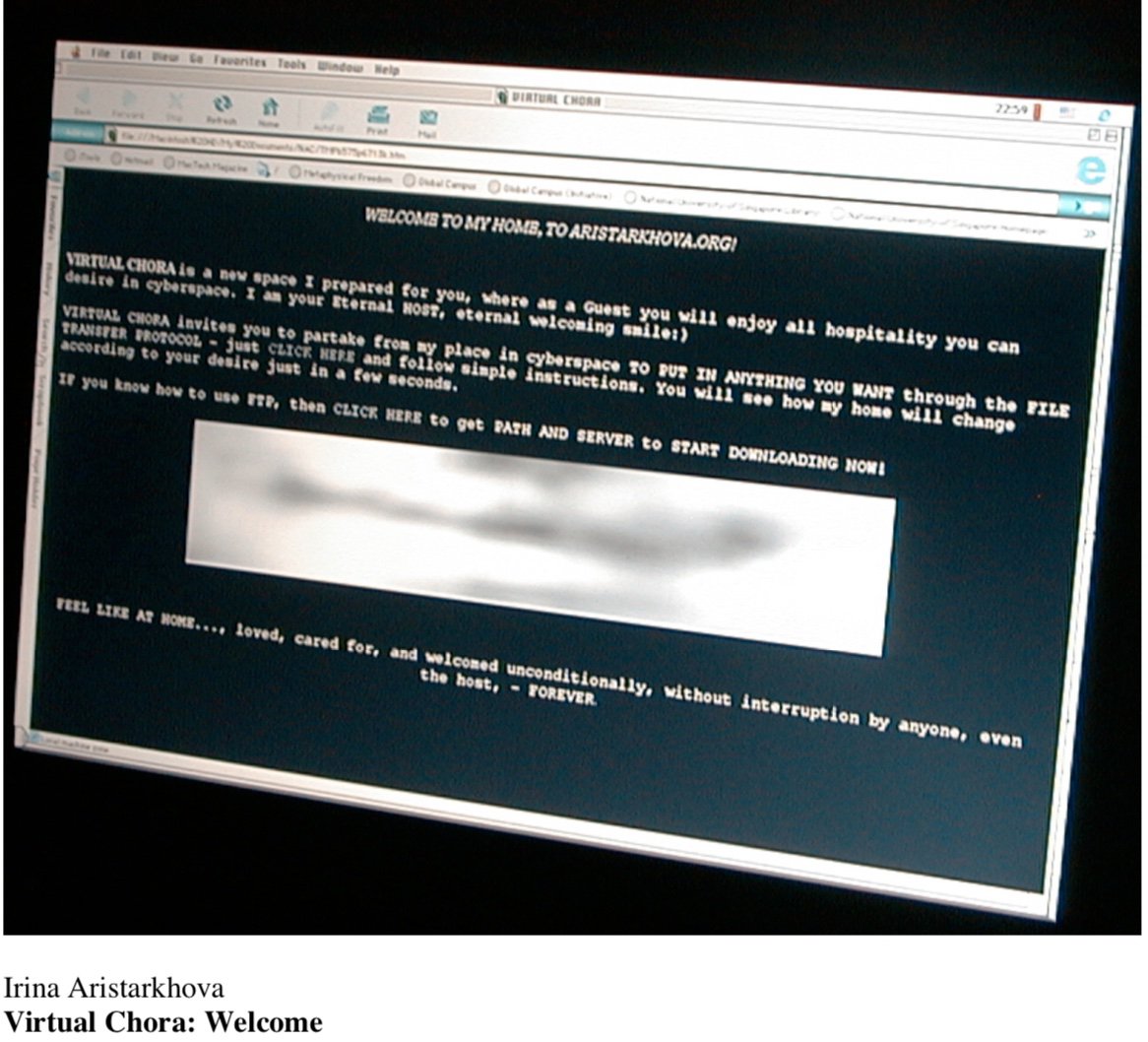
1999, Virtual Chora, https://constantvzw.org/verlag/spip.php?article16#
One major quality that marries home and chora is not their belonging to the kin of the feminine, as some might expect. […] This bond between home and chora is unconditional receptivity. Hospitality is part of both so essentially, that in some philosophical elaborations on chora and “home” we can interchange them without disrupting the drive of the argument (another interchange would be with the “matrix,” though usually with one that is hidden, but that is a matter of our concern elsewhere). Certainly, this no-where condition of chora and “home” (through its singular uniqueness) is partially beneficial when applied to the World Wide Web. […] “Macro” (cosmos) and “Micro” (atom) live peacefully together in the house of information, represented by the World Wide Web. A Web that is as Wide as the entire World. A sphere of matter criss-crossed with threads of information. Depending on how we position the World in WWW, this world can be inside our imagination or transformed into the entire universe.
1999, Irina Aristarkhova, Constant Verlag, https://constantvzw.org/verlag/spip.php?article16#
Editor’s Note: In this work, Aristarkhova set up a website to provide 50MB of space for free to use as users desired without any passwords. The image was of smiling lips, Mona Lisa-style, questioning cyberspace as the matrix/empty space imagery of “Chora.” —MS
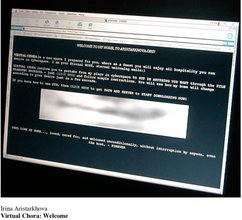
1999, Virtual Chora, https://constantvzw.org/verlag/spip.php?article16#
(182)
1999
Cyber-Jouissance: A Sketch for a Politics of Pleasure
Irina Aristarkhova
We create our own (cyber) cultures, that will embody our lines of forces, our live energy, and that changes cyberspace as a feminist space too. […] Being cyberfeminists we should not forget those female fingers that make bodies of our computers all over the world, and who employed for they are women […] We know how to make knots, webs, nets and tangles. What can be more political in cultures of symbolic matricide and inferiority of female genealogy than shared women jouissance, outside “allowed” spaces? […]
It is a political statement that celebrates the power of pleasure. This positive energy of cyberfeminism in Russia in joined action with other feminist practices creates new forms of subjectivities for Russian women […] With many women we”keep in touch” only through cyberspace, establishing very much material contacts and embodied relations. […] For Russian women, [the] Internet and cyberspace provide an opportunity to start a relation among themselves “body-to-body” […] that weaves a Russian thread into a rich colorful cloth of world feminism today.
1999, Irina Aristarkhova, Telepolis, December 5, 1999, https://www.heise.de/tp/features/Cyber-Jouissance-3442189.html
http://www.tacticalmediafiles.net/n5m3/pages/programme/links/cyberfem.htm
We create our own (cyber) cultures, that will embody our lines of forces, our live energy, and that changes cyberspace as a feminist space too. […] Being cyberfeminists we should not forget those female fingers that make bodies of our computers all over the world, and who employed for they are women […] We know how to make knots, webs, nets and tangles. What can be more political in cultures of symbolic matricide and inferiority of female genealogy than shared women jouissance, outside “allowed” spaces? […]
It is a political statement that celebrates the power of pleasure. This positive energy of cyberfeminism in Russia in joined action with other feminist practices creates new forms of subjectivities for Russian women […] With many women we”keep in touch” only through cyberspace, establishing very much material contacts and embodied relations. […] For Russian women, [the] Internet and cyberspace provide an opportunity to start a relation among themselves “body-to-body” […] that weaves a Russian thread into a rich colorful cloth of world feminism today.
1999, Irina Aristarkhova, Telepolis, December 5, 1999, https://www.heise.de/tp/features/Cyber-Jouissance-3442189.html
http://www.tacticalmediafiles.net/n5m3/pages/programme/links/cyberfem.htm
(183)
1999
Hosting the Other: Cyberfeminist Strategies for Net-Communities
Irina Aristarkhova
What happens when the hostess owns? Today more and more often women own and that poses new ethical and political questions to our feminist practices. A fundamental one is how to capitalize on our training in hospitality making it more possible within property relations, instead of forgetting our ways and jealously safeguarding our new belongings. What are the fortifications we are erecting in our cyberfeminist practices/spaces today? While an extensive survey of the history of cyberfeminist communities would be useful here, this is well beyond the scope of this short essay. Here, after some brief observations on the development of net communities in Russia with a view to showing its complicities with the construction of the Russian nation as a homogeneous entity, it is argued that the cyberfeminist articulations in Russia are in serious danger of replicating this very same homogenizations. However, it is also suggested that because of its own marginality within the Russian polity, cyberfeminism presents greater possibilities for evolving strategies of hosting the “other” through its net communities.
1999, Irina Aristarkhova, in Next Cyberfeminist International, eds. Cornelia Sollfrank and the Old Boys Network (Hamburg: obn: 1999), pp. 17–21; excerpt pp. 19–20
Editor’s Note: Irina Aristarkhova’s other texts emphasize cultural difference, theorizing questions of technology and difference and focusing on what this means for cyberfeminism in Russia. She also created a collection for the Cyberfeminism Index. —MS
What happens when the hostess owns? Today more and more often women own and that poses new ethical and political questions to our feminist practices. A fundamental one is how to capitalize on our training in hospitality making it more possible within property relations, instead of forgetting our ways and jealously safeguarding our new belongings. What are the fortifications we are erecting in our cyberfeminist practices/spaces today? While an extensive survey of the history of cyberfeminist communities would be useful here, this is well beyond the scope of this short essay. Here, after some brief observations on the development of net communities in Russia with a view to showing its complicities with the construction of the Russian nation as a homogeneous entity, it is argued that the cyberfeminist articulations in Russia are in serious danger of replicating this very same homogenizations. However, it is also suggested that because of its own marginality within the Russian polity, cyberfeminism presents greater possibilities for evolving strategies of hosting the “other” through its net communities.
1999, Irina Aristarkhova, in Next Cyberfeminist International, eds. Cornelia Sollfrank and the Old Boys Network (Hamburg: obn: 1999), pp. 17–21; excerpt pp. 19–20
Editor’s Note: Irina Aristarkhova’s other texts emphasize cultural difference, theorizing questions of technology and difference and focusing on what this means for cyberfeminism in Russia. She also created a collection for the Cyberfeminism Index. —MS
(184)
1999
CyberPowWow 2
Nation to Nation
Nation to Nation is proud to present CyberPowWow 2, a techno-weekend of workshops and on-line discussions that celebrate the opening of the CyberPowWow Palace, a graphical chat environment that allows you to talk with people from around the world in real time. Visit the virtual galleries, library and performance space to view work by First Nations artists and writers Lori Blondeau, Lee Crowchild, Skawennati Tricia Fragnito, Sheryl Kootenhayoo, Ahasiw Maskegon-Iskwew, Archer Pechawis, Edward Poitras and Jolene Rickard. All artists will be on-line to tell you about their work.
If you do not have a computer of your own, or if you just want to go to a friendly place that does have a computer with an Internet connection and ThePalace already installed, just go to one of the Gathering Sites […]
1999, Nation to Nation, organizers (gathering, Galerie OBORO, Montreal, QC; Walter Phillips Gallery and the Aboriginal Arts Programme, Banff, AB; SOIL Digital Media Production Suite, Regina, SK; Roundhouse Community Arts and Recreation Centre, Vancouver, BC; TRIBE and Video Vérité, Saskatoon, SK, April 17–18, 1999); excerpt from “CyberPowWow 2,” CyberPowWow, http://www.cyberpowwow.net/cpw2.html
Nation to Nation is proud to present CyberPowWow 2, a techno-weekend of workshops and on-line discussions that celebrate the opening of the CyberPowWow Palace, a graphical chat environment that allows you to talk with people from around the world in real time. Visit the virtual galleries, library and performance space to view work by First Nations artists and writers Lori Blondeau, Lee Crowchild, Skawennati Tricia Fragnito, Sheryl Kootenhayoo, Ahasiw Maskegon-Iskwew, Archer Pechawis, Edward Poitras and Jolene Rickard. All artists will be on-line to tell you about their work.
If you do not have a computer of your own, or if you just want to go to a friendly place that does have a computer with an Internet connection and ThePalace already installed, just go to one of the Gathering Sites […]
1999, Nation to Nation, organizers (gathering, Galerie OBORO, Montreal, QC; Walter Phillips Gallery and the Aboriginal Arts Programme, Banff, AB; SOIL Digital Media Production Suite, Regina, SK; Roundhouse Community Arts and Recreation Centre, Vancouver, BC; TRIBE and Video Vérité, Saskatoon, SK, April 17–18, 1999); excerpt from “CyberPowWow 2,” CyberPowWow, http://www.cyberpowwow.net/cpw2.html
(185)
1999
Shifting Shadow Solitude
Gita Hashemi
My mission is to create a text which captures the knowledge I have acquired. This mission is incidental to the task I set out for myself some years ago: to carve a space for the “personal” in the discourse about and by Iranian women on the gender struggles in Iran prior to, during and after the 1979 Revolution. This had to be a space where the voice could be heard in the intimacy of the “private” addressing issues that are “public” because they affect the conditions of our lives. I have approached this task as an artist, and I wish my work to be viewed as art because I have no expertise in the social sciences and, as a practitioner with a particular past, I am distrustful of the paradigms of and boundaries around knowledge, its acquisition and its language in the Western, still male-dominated academic environment. By default, I find myself in the “margins”, still the space for the post-colonial and the feminist. But my relations to these two are ambivalent, for I am also critical of both for their exclusivist histories and representational practices that, in their own time, have suppressed, or at best ignored, the voices of the Other to the Other. […] Although feminist reconstructions of history place women and their activism on the main stage of the revolutionary movements in Iran, the revolutionary movements in Iran, defined and led by men, have consistently relegated women to the shadows, behind the curtains.
1999, Gita Hashemi, https://gitaha.net/archives/solitude2/g_portal.html

cover image from https://gitaha.net/archives/solitude2/g_portal.html
My mission is to create a text which captures the knowledge I have acquired. This mission is incidental to the task I set out for myself some years ago: to carve a space for the “personal” in the discourse about and by Iranian women on the gender struggles in Iran prior to, during and after the 1979 Revolution. This had to be a space where the voice could be heard in the intimacy of the “private” addressing issues that are “public” because they affect the conditions of our lives. I have approached this task as an artist, and I wish my work to be viewed as art because I have no expertise in the social sciences and, as a practitioner with a particular past, I am distrustful of the paradigms of and boundaries around knowledge, its acquisition and its language in the Western, still male-dominated academic environment. By default, I find myself in the “margins”, still the space for the post-colonial and the feminist. But my relations to these two are ambivalent, for I am also critical of both for their exclusivist histories and representational practices that, in their own time, have suppressed, or at best ignored, the voices of the Other to the Other. […] Although feminist reconstructions of history place women and their activism on the main stage of the revolutionary movements in Iran, the revolutionary movements in Iran, defined and led by men, have consistently relegated women to the shadows, behind the curtains.
1999, Gita Hashemi, https://gitaha.net/archives/solitude2/g_portal.html

cover image from https://gitaha.net/archives/solitude2/g_portal.html
(186)
1999
Women Hackers
Cornelia Sollfrank
While this opinion contains a generalisation about men and women and refers to the biological sex of a person, it also relates to the social construct of gender, and therefore recalls the feminist arguments of the 70s. But obviously, girls and boys are still brought up in different ways, and develop different preferences. It is necessary to face this fact and the resulting conflicts in order to bridge the gap between social and political realities and wishful cyberfeminist thinking.
I am not assuming that women and technology necessarily have as special and as close a relationship as certain cyberfeminists proclaim. My clitoris does not have a direct line to the Matrix—unfortunately. Such rhetoric mystifies technology and misrepresents the daily life of the female computer worker. The simple fact is that most women prefer to spend their lives doing other things than programming fanatically or exploring the depths of the net. And even within the cyberfeminist community, there are only a few computer professionals, and fewer nerds.
1999, Cornelia Sollfrank, in Next Cyberfeminist International, eds. Cornelia Sollfrank and the Old Boys Network (Hamburg: obn: 1999), pp. 41–45; excerpt p. 48
While this opinion contains a generalisation about men and women and refers to the biological sex of a person, it also relates to the social construct of gender, and therefore recalls the feminist arguments of the 70s. But obviously, girls and boys are still brought up in different ways, and develop different preferences. It is necessary to face this fact and the resulting conflicts in order to bridge the gap between social and political realities and wishful cyberfeminist thinking.
I am not assuming that women and technology necessarily have as special and as close a relationship as certain cyberfeminists proclaim. My clitoris does not have a direct line to the Matrix—unfortunately. Such rhetoric mystifies technology and misrepresents the daily life of the female computer worker. The simple fact is that most women prefer to spend their lives doing other things than programming fanatically or exploring the depths of the net. And even within the cyberfeminist community, there are only a few computer professionals, and fewer nerds.
1999, Cornelia Sollfrank, in Next Cyberfeminist International, eds. Cornelia Sollfrank and the Old Boys Network (Hamburg: obn: 1999), pp. 41–45; excerpt p. 48
(187)
2000
Virtual Gender: Fantasies of Subjectivity and Embodiment
Mary Ann O‘Farrell, Lynne Vallone
Where is the body in fantasy? What are the consequences of fantasy for real and imagined bodies? How is gender inflected when fantasy separates it from its embeddedness in sex? Such questions suggest that the charged fantasies that become culture and ideology derive their charge in part from a complex relation to the body. The merely apparent virtuality of gender fantasy engages irresistably the material body—whether understanding it as something to escape, something from which fantastic scenarios derive, or that on which fantasies inscribe themselves And yet the establishment of a sex/gender distinction has elided the question of embodiment’s relation to gender. […] Critics of cyberculture have already been most engaged in considering the body’s relation to gender: for them understanding cyberculture has meant debating the place of the body in a virtual realm, and articulating that place has meant confronting questions of gender. As a “wonderful plot device,” virtual reality encourages experimental narratives of a subjectivity that exceeds the limitations of embodiment.
1999, Mary Ann O’Farrell and Lynne Vallone, eds. (Ann Arbor, MI: University of Michigan Press, 1999); excerpt from Mary Ann Farrell and Lynne Vallone, introduction to O’Farrell and Vallone, Virtual Gender, p. 1
Contributors include Sidonie Smith, Janel Mueller, Helen Thompson, Robyn R. Warhol, Charlotte Canning, Harriette Andreadis, Kay Schaffer, Caroll Smith-Rosenberg, Bernice L. Hausman, and Seyla Benhabib.
https://www.press.umich.edu/script/press/10804
Where is the body in fantasy? What are the consequences of fantasy for real and imagined bodies? How is gender inflected when fantasy separates it from its embeddedness in sex? Such questions suggest that the charged fantasies that become culture and ideology derive their charge in part from a complex relation to the body. The merely apparent virtuality of gender fantasy engages irresistably the material body—whether understanding it as something to escape, something from which fantastic scenarios derive, or that on which fantasies inscribe themselves And yet the establishment of a sex/gender distinction has elided the question of embodiment’s relation to gender. […] Critics of cyberculture have already been most engaged in considering the body’s relation to gender: for them understanding cyberculture has meant debating the place of the body in a virtual realm, and articulating that place has meant confronting questions of gender. As a “wonderful plot device,” virtual reality encourages experimental narratives of a subjectivity that exceeds the limitations of embodiment.
1999, Mary Ann O’Farrell and Lynne Vallone, eds. (Ann Arbor, MI: University of Michigan Press, 1999); excerpt from Mary Ann Farrell and Lynne Vallone, introduction to O’Farrell and Vallone, Virtual Gender, p. 1
Contributors include Sidonie Smith, Janel Mueller, Helen Thompson, Robyn R. Warhol, Charlotte Canning, Harriette Andreadis, Kay Schaffer, Caroll Smith-Rosenberg, Bernice L. Hausman, and Seyla Benhabib.
https://www.press.umich.edu/script/press/10804
(188)
2000–
2008
TechnoDyke.Com
Stacy Bias
In 2000, Stacy founded TechnoDyke.Com. During its eight year run, TechnoDyke was a dynamic online publication and forum whose mission was to facilitate online and real-time community by providing queer-centric media by/for queer women. Over its eight year run, TechnoDyke’s audience soared to over 50,000 unique visitors per month and over 15,000 registered members. TechnoDyke went offline in 2008 as Stacy’s activism found a new passion and focus.
2000, Stacy Bias, http://www.technodyke.com/
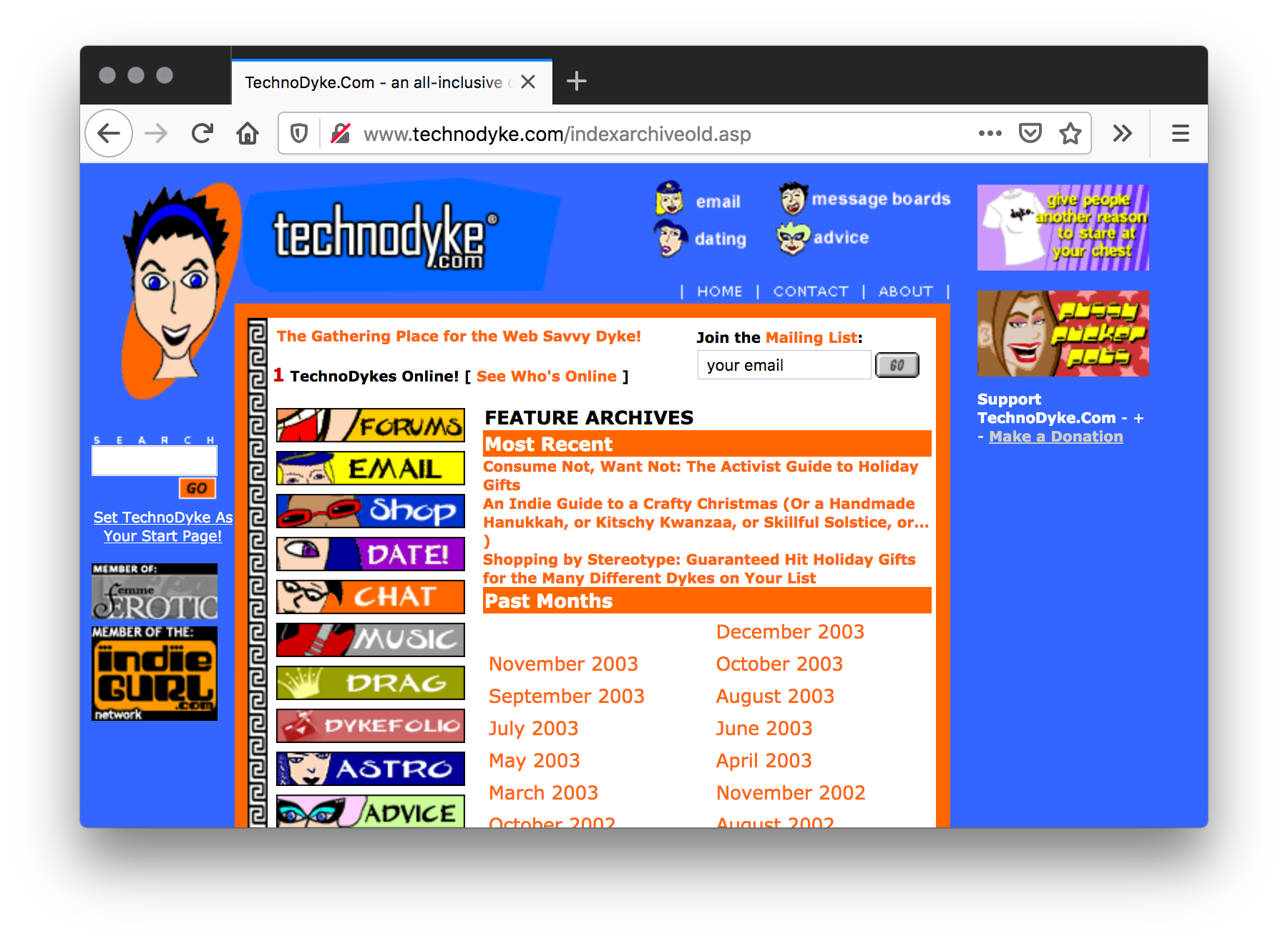
Screenshot, 2020, Firefox v76.0.1 on Mac OS 10.13.3; http://www.technodyke.com/indexarchiveold.asp
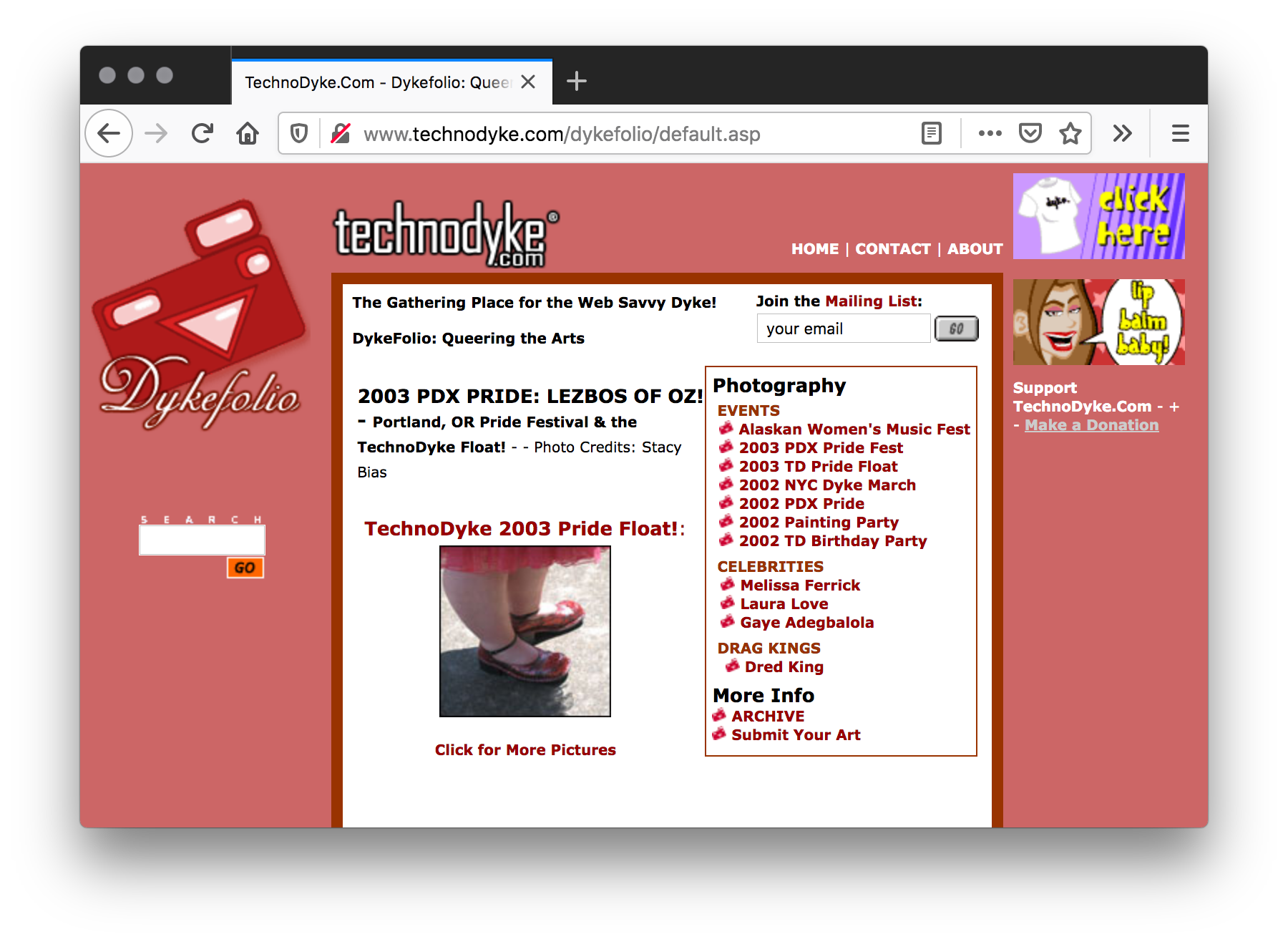
Screenshot, 2020, Firefox v76.0.1 on Mac OS 10.13.3; http://www.technodyke.com/dykefolio/default.asp
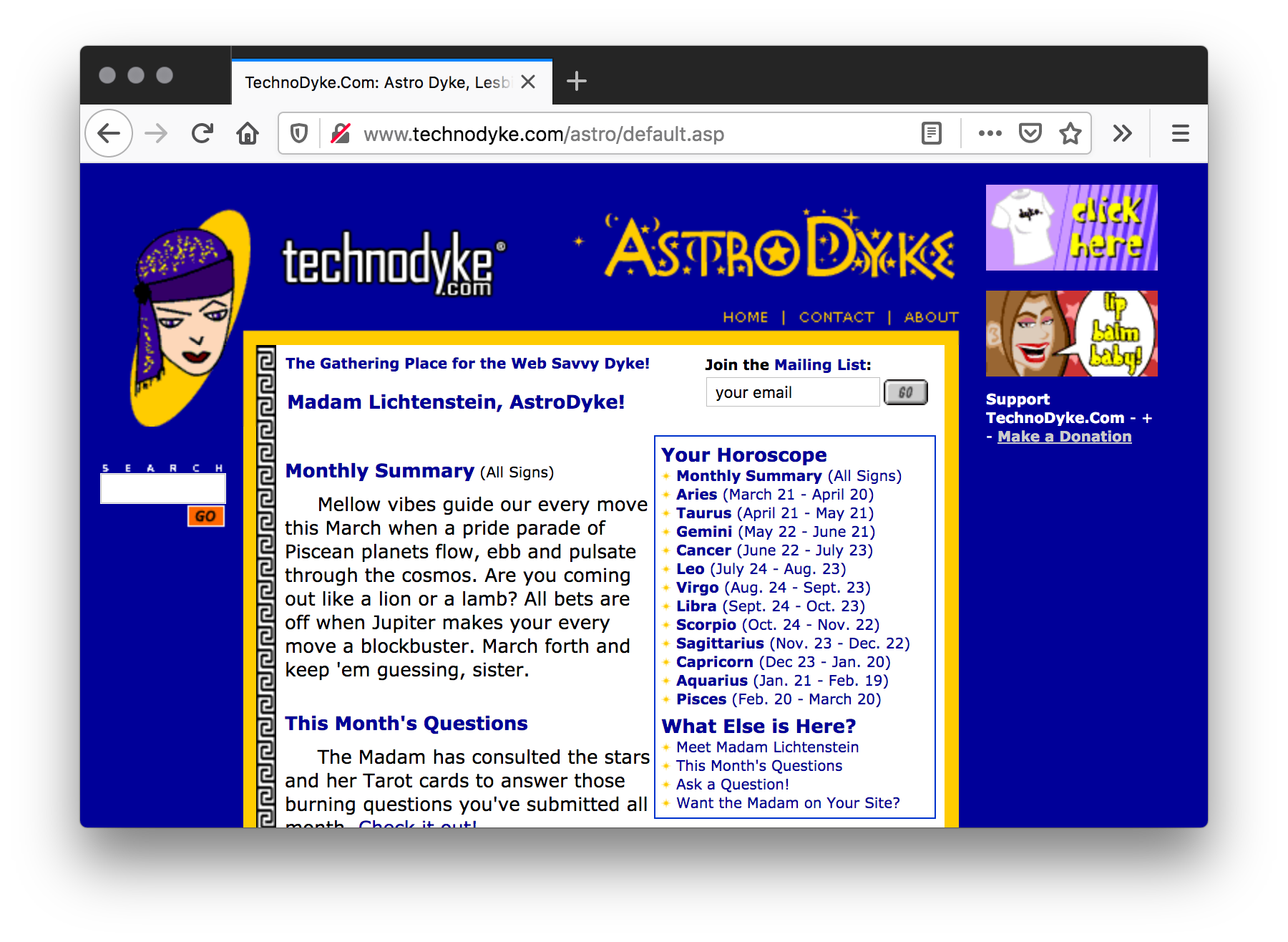
Screenshot, 2020, Firefox v76.0.1 on Mac OS 10.13.3; http://www.technodyke.com/astro/default.asp
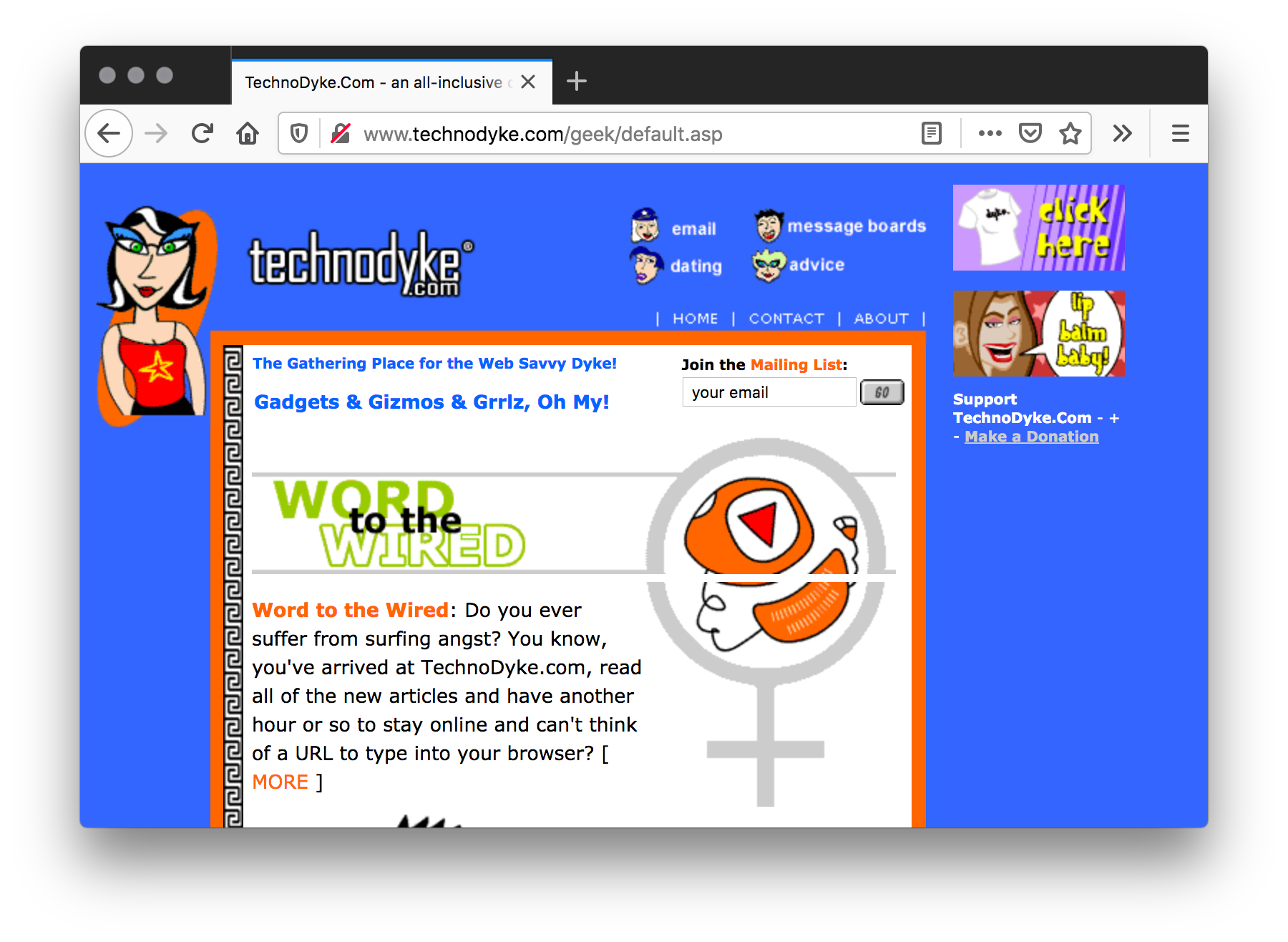
Screenshot, 2020, Firefox v76.0.1 on Mac OS 10.13.3; http://www.technodyke.com/geek/default.asp
In 2000, Stacy founded TechnoDyke.Com. During its eight year run, TechnoDyke was a dynamic online publication and forum whose mission was to facilitate online and real-time community by providing queer-centric media by/for queer women. Over its eight year run, TechnoDyke’s audience soared to over 50,000 unique visitors per month and over 15,000 registered members. TechnoDyke went offline in 2008 as Stacy’s activism found a new passion and focus.
2000, Stacy Bias, http://www.technodyke.com/
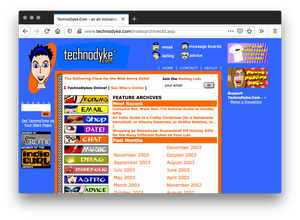
Screenshot, 2020, Firefox v76.0.1 on Mac OS 10.13.3; http://www.technodyke.com/indexarchiveold.asp
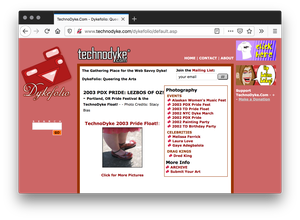
Screenshot, 2020, Firefox v76.0.1 on Mac OS 10.13.3; http://www.technodyke.com/dykefolio/default.asp
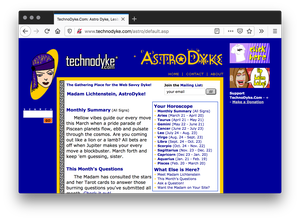
Screenshot, 2020, Firefox v76.0.1 on Mac OS 10.13.3; http://www.technodyke.com/astro/default.asp
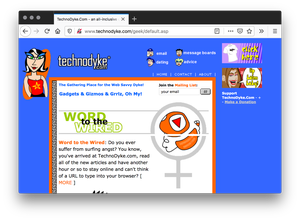
Screenshot, 2020, Firefox v76.0.1 on Mac OS 10.13.3; http://www.technodyke.com/geek/default.asp
(189)
2000
Cybergrrl
Aliza Sherman
[Let’s] just say I love my computer, I love the WWW (surf the wave) […] How did I come to create Cybergrrl? When I first saw personal homepages on the Web, I was amazed at how many people included a photo of themselves. I, being a shy little thing, couldn’t do that and live with myself (heehee—but look at me now!), so I drew a cartoon of myself with a touch of Japanese Anime and voila! Cybergrrl! (x) […] How did I overcome the barriers as a woman to get into this techno thang? Hey, not to get heavy handed here, but those barriers do exist. I’m at the leading edge of the Generation X population and I was never ever encouraged to go into math or science or computers in school. It was English for girls and the “hard stuff” for boys. I was also a writer/musician and thought that computers would “kill” my creative spirit. But when I was temping at a computer manufacturing company, I was told I could earn more money with computer skills. So I learned how to use them. Then I fell in love with them. Now I earn a living with them. I think that sometimes we create our own barriers although I do believe there are some barriers out there still in this day and age, but I am Cybergrrl and I will not be defeated!
1995, Aliza Sherman, http://www.cybergrrl.com/
[Let’s] just say I love my computer, I love the WWW (surf the wave) […] How did I come to create Cybergrrl? When I first saw personal homepages on the Web, I was amazed at how many people included a photo of themselves. I, being a shy little thing, couldn’t do that and live with myself (heehee—but look at me now!), so I drew a cartoon of myself with a touch of Japanese Anime and voila! Cybergrrl! (x) […] How did I overcome the barriers as a woman to get into this techno thang? Hey, not to get heavy handed here, but those barriers do exist. I’m at the leading edge of the Generation X population and I was never ever encouraged to go into math or science or computers in school. It was English for girls and the “hard stuff” for boys. I was also a writer/musician and thought that computers would “kill” my creative spirit. But when I was temping at a computer manufacturing company, I was told I could earn more money with computer skills. So I learned how to use them. Then I fell in love with them. Now I earn a living with them. I think that sometimes we create our own barriers although I do believe there are some barriers out there still in this day and age, but I am Cybergrrl and I will not be defeated!
1995, Aliza Sherman, http://www.cybergrrl.com/
(190)
2000
Erasing @race: Going White in the (Inter)Face
Beth Kolko
LambdaMOO is a sprawling virtual world of several thousand inhabitants who interact in real-time and asynchronously via text. In this MUD you can set properties for your age, your hometown, your timezone, your webpage, your pals, your gender, your online home, your feature objects, and your e-mail address. But not your race. As a user you can force a racial identity into the system by adding such information to the description property, choosing a name that has particular associations, or programming messages that broadcast specific information to other users upon entrances, exits, or responses. But the system has no category for race and provides no moment of reading or writing race. […] Importantly, as documented interactions of community members show, the default race of the MUD is assumed to be white; […] given a default, why choose to mark the “property”? An attitude that race is one of those things that purportedly can stay behind in the “real world” prevails; marking race online comes to be read as an aggressive and unfortunate desire to bring the “yucky stuff” into this protoutopian space.
2000, Beth E. Kolko, in Race in Cyberspace, eds. Beth E. Kolko, Lisa Nakamura and Gilbert B. Rodman (New York: Routledge, 1999), pp. 213–232; excerpt p. 215
LambdaMOO is a sprawling virtual world of several thousand inhabitants who interact in real-time and asynchronously via text. In this MUD you can set properties for your age, your hometown, your timezone, your webpage, your pals, your gender, your online home, your feature objects, and your e-mail address. But not your race. As a user you can force a racial identity into the system by adding such information to the description property, choosing a name that has particular associations, or programming messages that broadcast specific information to other users upon entrances, exits, or responses. But the system has no category for race and provides no moment of reading or writing race. […] Importantly, as documented interactions of community members show, the default race of the MUD is assumed to be white; […] given a default, why choose to mark the “property”? An attitude that race is one of those things that purportedly can stay behind in the “real world” prevails; marking race online comes to be read as an aggressive and unfortunate desire to bring the “yucky stuff” into this protoutopian space.
2000, Beth E. Kolko, in Race in Cyberspace, eds. Beth E. Kolko, Lisa Nakamura and Gilbert B. Rodman (New York: Routledge, 1999), pp. 213–232; excerpt p. 215
(191)
2000
Race in Cyberspace
Beth Kolko, Lisa Nakamura, Gilbert Rodman
We believe that race matters no less in cyberspace than it does “IRL” (in real life). One of the most basic reasons for this is that the binary opposition between cyberspace and “the real world” is not nearly as sharp or clean as it’s often made out to be. While the mediated nature of cyberspace renders invisible many (and, in some instances, all) of the visual and aural cues that serve to mark people’s identities IRL, that invisibility doesn’t carry back over into “the real world” in ways that allow people to log in and simply shrug off a lifetime of experiencing the world from specific identity-related perspectives. You may be able to go online and not have anyone know your race or gender—you may even be able to take cyberspace’s potential for anonymity a step further and masquerade as a race or gender that doesn’t reflect the real, offline you—but neither the invisibility nor the mutability of online identity makes it possible for you to escape your “real world” identity completely. Consequently, race matters in cyberspace precisely because all of us who spend time online are already shaped by the ways in which race matters offline, and we can’t help but bring our own knowledge, experiences, and values with us when we log on.
2000, Beth E. Kolko, Lisa Nakamura and Gilbert B. Rodman, eds. (New York: Routledge, 1999); excerpt from Beth E. Kolko, Lisa Nakamura, and Gilbert B. Rodman, introduction to Kolko et al., Race in Cyberspace, pp. 4–5
Contributors include Beth E. Kolko, Lisa Nakamura, Gilbert B. Rodman, Jennifer González, Jeffrey A. Ow, Rajani Sudan, David Crane, Tara McPherson, David Silver, Mark Warschauer, Joe Lockard, and Jonathan Sterne.
https://www.routledge.com/Race-in-Cyberspace/Kolko-Nakamura-Rodman/p/book/9780415921633 https://www.are.na/block/7714550
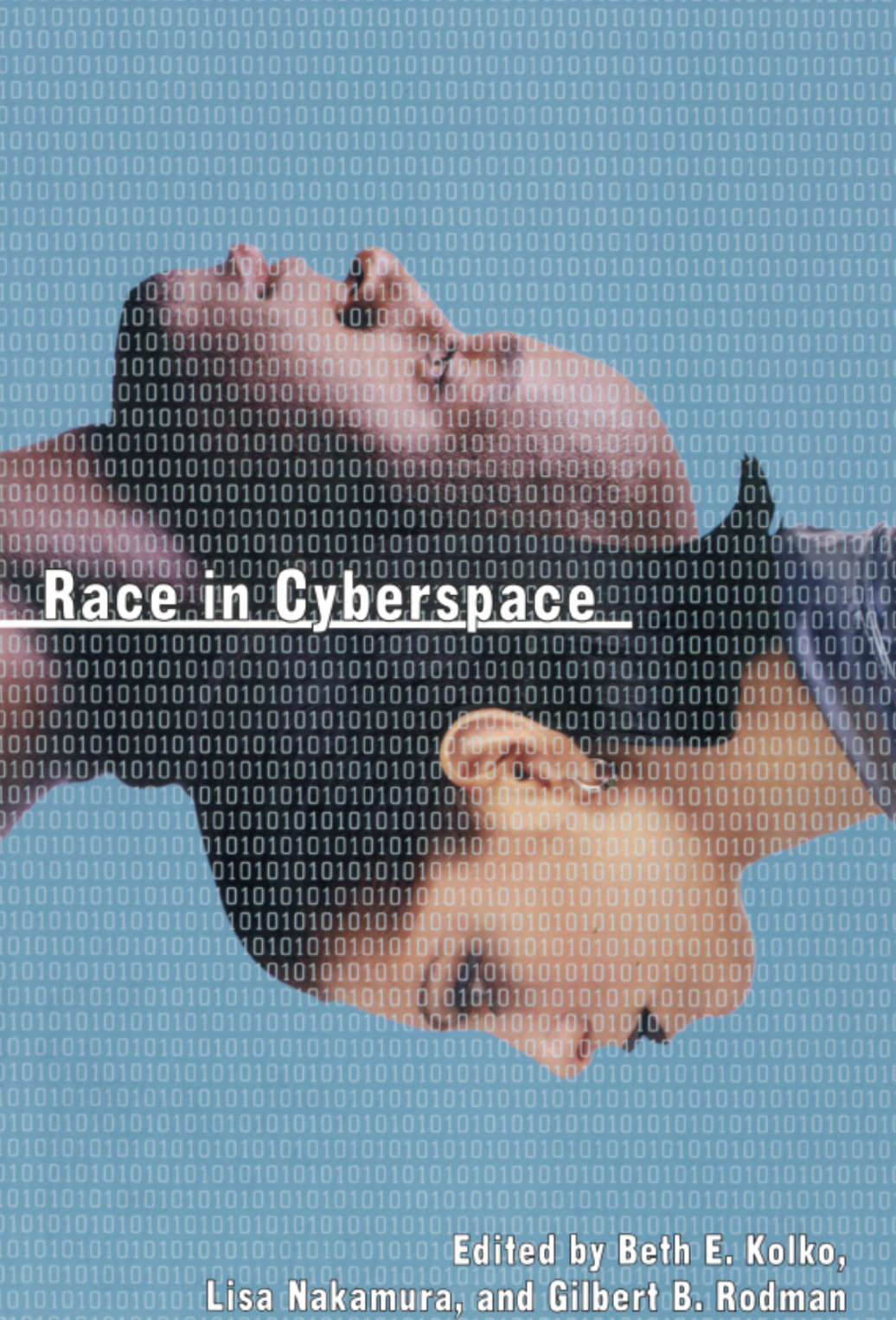
Race in Cyberspace book cover, 2000
We believe that race matters no less in cyberspace than it does “IRL” (in real life). One of the most basic reasons for this is that the binary opposition between cyberspace and “the real world” is not nearly as sharp or clean as it’s often made out to be. While the mediated nature of cyberspace renders invisible many (and, in some instances, all) of the visual and aural cues that serve to mark people’s identities IRL, that invisibility doesn’t carry back over into “the real world” in ways that allow people to log in and simply shrug off a lifetime of experiencing the world from specific identity-related perspectives. You may be able to go online and not have anyone know your race or gender—you may even be able to take cyberspace’s potential for anonymity a step further and masquerade as a race or gender that doesn’t reflect the real, offline you—but neither the invisibility nor the mutability of online identity makes it possible for you to escape your “real world” identity completely. Consequently, race matters in cyberspace precisely because all of us who spend time online are already shaped by the ways in which race matters offline, and we can’t help but bring our own knowledge, experiences, and values with us when we log on.
2000, Beth E. Kolko, Lisa Nakamura and Gilbert B. Rodman, eds. (New York: Routledge, 1999); excerpt from Beth E. Kolko, Lisa Nakamura, and Gilbert B. Rodman, introduction to Kolko et al., Race in Cyberspace, pp. 4–5
Contributors include Beth E. Kolko, Lisa Nakamura, Gilbert B. Rodman, Jennifer González, Jeffrey A. Ow, Rajani Sudan, David Crane, Tara McPherson, David Silver, Mark Warschauer, Joe Lockard, and Jonathan Sterne.
https://www.routledge.com/Race-in-Cyberspace/Kolko-Nakamura-Rodman/p/book/9780415921633 https://www.are.na/block/7714550
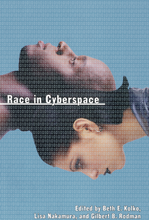
Race in Cyberspace book cover, 2000
(192)
2000
Genderchangers Academy
Tali, brbr, Sara
GCA stands for The Gender Changer Academy. It is a nonprofit organization located in Amsterdam, The Netherlands and it is runned by female volunteers only. We encourage women to crash computers and to put it all back together again. Preferably with an improved installation. [GCA] was founded in Amsterdam in March 2000 by Tali, brbr and Sara. A few months later Sisi joined the forces and we became the teachers of the very first class given by the GCA. The aim of the course was to get more hands-on practice on computer hardware, and to give women a chance to look behind the screen of A COMPUTER. None of us had any or very little experience with the mysteries of computer hardware. We all worked with computers in one way or another, using a text editor and surfing the internet now and then. […] A genderchanger figures out how her computer works and she is not afraid of taking it apart.
2000, Tali, brbr, and Sara, https://www.genderchangers.org/
https://web.archive.org/web/20070701170918/http://old.genderchangers.org/index.html#ancor1

logo from Genderchangers Academy
GCA stands for The Gender Changer Academy. It is a nonprofit organization located in Amsterdam, The Netherlands and it is runned by female volunteers only. We encourage women to crash computers and to put it all back together again. Preferably with an improved installation. [GCA] was founded in Amsterdam in March 2000 by Tali, brbr and Sara. A few months later Sisi joined the forces and we became the teachers of the very first class given by the GCA. The aim of the course was to get more hands-on practice on computer hardware, and to give women a chance to look behind the screen of A COMPUTER. None of us had any or very little experience with the mysteries of computer hardware. We all worked with computers in one way or another, using a text editor and surfing the internet now and then. […] A genderchanger figures out how her computer works and she is not afraid of taking it apart.
2000, Tali, brbr, and Sara, https://www.genderchangers.org/
https://web.archive.org/web/20070701170918/http://old.genderchangers.org/index.html#ancor1

logo from Genderchangers Academy
(193)
2000
Tales from the Puppet Mistress
GashGirl
Years after losing my machine virginity to a Mac 512K I have slipped through the reality grid into the clear violet haze of spiralspace.
Obsession . . . Driven beyond my allocated 4 hours per day I score extra time from wherever I can.
Desire . . . I slide through the luminous screen to inhabit the spaces between words. The keyboard is constantly sticky.
Madness . . . An erotically reconstructed irreplicunt my biocode is being rewritten. This is better than any drug. Like speed it suppresses appetite.
Like heroin it eases despair. Day dissolves like serotonin into night, time irrelevant beyond keeping rendezvous across different zones.
I connect, I communicate, I dominate, therefore I am.
Suck my code, baby!
2000, GashGirl, https://web.archive.org/web/20031206171833/http://www.suspectthoughts.com/puppet.htm
Years after losing my machine virginity to a Mac 512K I have slipped through the reality grid into the clear violet haze of spiralspace.
Obsession . . . Driven beyond my allocated 4 hours per day I score extra time from wherever I can.
Desire . . . I slide through the luminous screen to inhabit the spaces between words. The keyboard is constantly sticky.
Madness . . . An erotically reconstructed irreplicunt my biocode is being rewritten. This is better than any drug. Like speed it suppresses appetite.
Like heroin it eases despair. Day dissolves like serotonin into night, time irrelevant beyond keeping rendezvous across different zones.
I connect, I communicate, I dominate, therefore I am.
Suck my code, baby!
2000, GashGirl, https://web.archive.org/web/20031206171833/http://www.suspectthoughts.com/puppet.htm
(194)
2000
Big Bad Chinese Mama
Kristina Wong
Inside are contained the “demure lotus blossoms,” the “geishas,” the “oriental sluts”—whatever you had imagined in your patriarchal, colonialist longings. These women will take you by storm (and will kick your ass). Yeah, you’ve seen mail order bride sites before, you may have even surfed over to an Asian porn site, but never in your wildest culturally commodifying sick sexual desires, have you been schooled by women (womyn) like this!
So, go ahead Mr. Smartypants. Come on in! After all, us “Orientals” are known for our hospitality and genteel demeanor. We aim to please …
2000, Kristina Wong, https://web.archive.org/web/20001018191423/http://www.bigbadchinesemama.com/index.shtml
http://kristinawong.com/projects/misc/

Screenshot, 2020, Firefox v76.0.1 on Mac OS 10.13.3; https://web.archive.org/web/20001018191423/http://www.bigbadchinesemama.com/index.shtml

artifact from https://web.archive.org/web/20001018191423/http://www.bigbadchinesemama.com/index.shtml

artifact from https://web.archive.org/web/20001018191423/http://www.bigbadchinesemama.com/index.shtml

artifact from https://web.archive.org/web/20001018191423/http://www.bigbadchinesemama.com/index.shtml

“Click on Bitchy Kat to get a glimpse of the Big Bad Chinese Mama herself!”, artifact from https://web.archive.org/web/20001018191423/http://www.bigbadchinesemama.com/index.shtml

Screenshot, 2020, Firefox v76.0.1 on Mac OS 10.13.3; https://web.archive.org/web/20001018220644/http://bigbadchinesemama.com/home.html
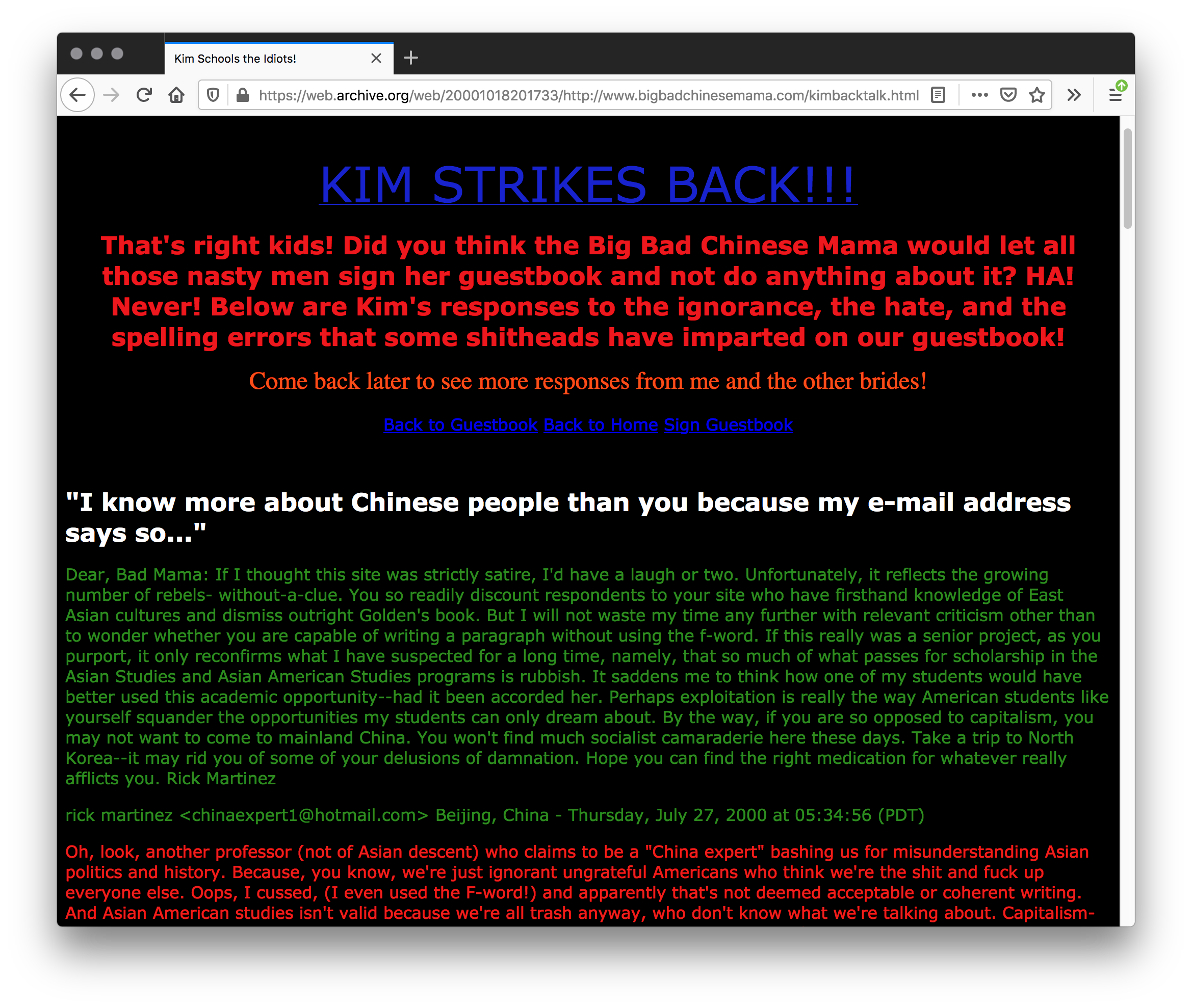
Screenshot, 2020, Firefox v76.0.1 on Mac OS 10.13.3; https://web.archive.org/web/20001018201733/http://www.bigbadchinesemama.com/kimbacktalk.html
Inside are contained the “demure lotus blossoms,” the “geishas,” the “oriental sluts”—whatever you had imagined in your patriarchal, colonialist longings. These women will take you by storm (and will kick your ass). Yeah, you’ve seen mail order bride sites before, you may have even surfed over to an Asian porn site, but never in your wildest culturally commodifying sick sexual desires, have you been schooled by women (womyn) like this!
So, go ahead Mr. Smartypants. Come on in! After all, us “Orientals” are known for our hospitality and genteel demeanor. We aim to please …
2000, Kristina Wong, https://web.archive.org/web/20001018191423/http://www.bigbadchinesemama.com/index.shtml
http://kristinawong.com/projects/misc/
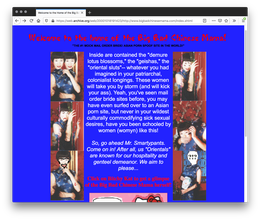
Screenshot, 2020, Firefox v76.0.1 on Mac OS 10.13.3; https://web.archive.org/web/20001018191423/http://www.bigbadchinesemama.com/index.shtml

artifact from https://web.archive.org/web/20001018191423/http://www.bigbadchinesemama.com/index.shtml

artifact from https://web.archive.org/web/20001018191423/http://www.bigbadchinesemama.com/index.shtml

artifact from https://web.archive.org/web/20001018191423/http://www.bigbadchinesemama.com/index.shtml

“Click on Bitchy Kat to get a glimpse of the Big Bad Chinese Mama herself!”, artifact from https://web.archive.org/web/20001018191423/http://www.bigbadchinesemama.com/index.shtml
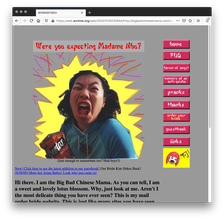
Screenshot, 2020, Firefox v76.0.1 on Mac OS 10.13.3; https://web.archive.org/web/20001018220644/http://bigbadchinesemama.com/home.html
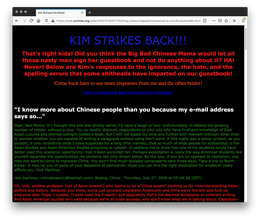
Screenshot, 2020, Firefox v76.0.1 on Mac OS 10.13.3; https://web.archive.org/web/20001018201733/http://www.bigbadchinesemama.com/kimbacktalk.html
(195)
2000
Genetic Response System 3.0
Diane Ludin
evolution isn’t what it used to be
image is everything
mirrors that wander and remember
correcting the code
2000, Diane Ludin, https://turbulence.org/Works/genresponse/, transcription from secondary pages, demo1.html, demo2.html, demo3.html, demo4.html

Screenshot, 2020, Firefox v76.0.1 on Mac OS 10.13.3; http://turbulence.org/Works/genresponse/index.html
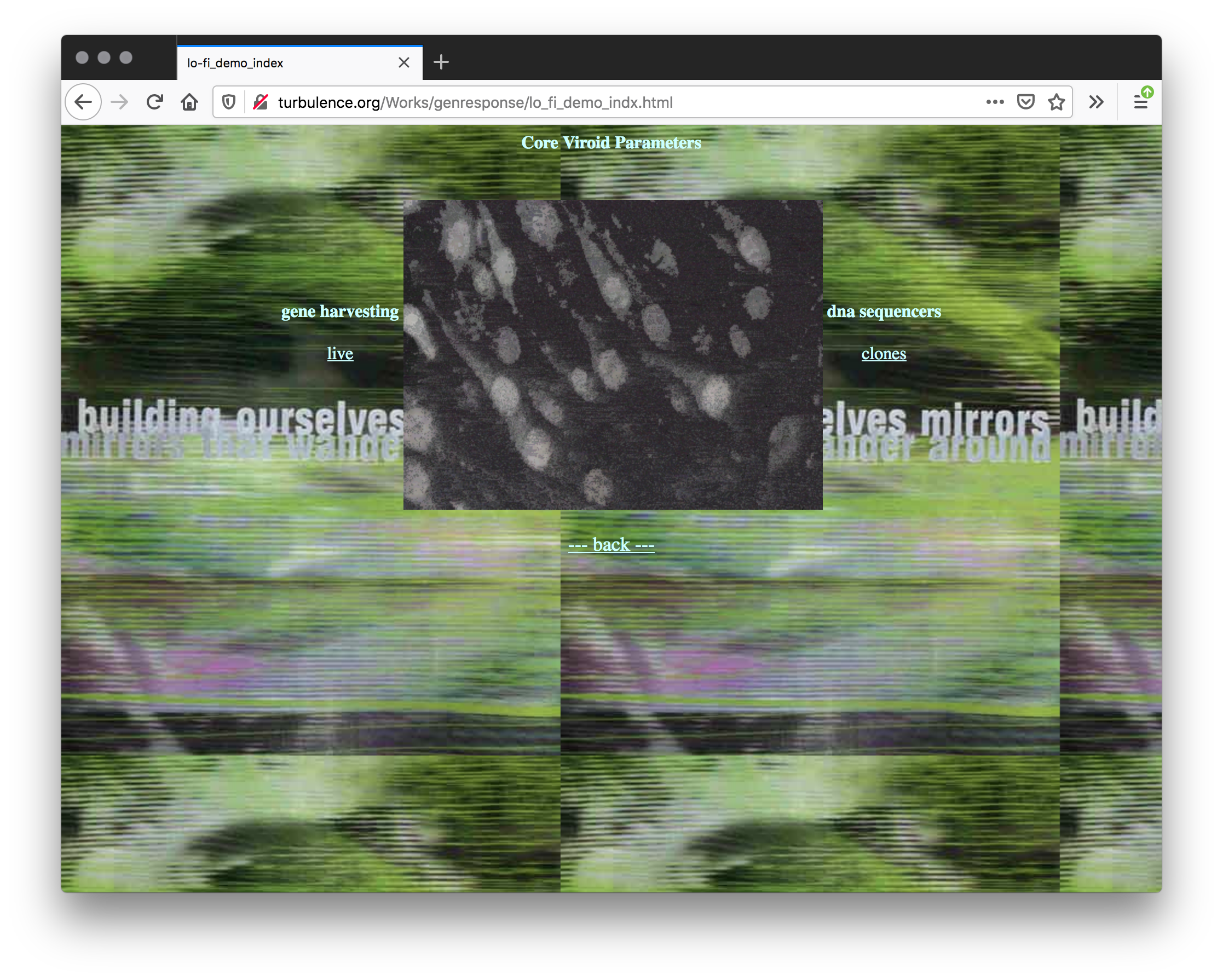
Screenshot, 2020, Firefox v76.0.1 on Mac OS 10.13.3; http://turbulence.org/Works/genresponse/lo_fi_demo_indx.html
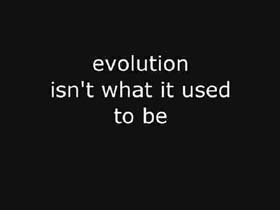
artifact from http://turbulence.org/Works/genresponse/demo1.html
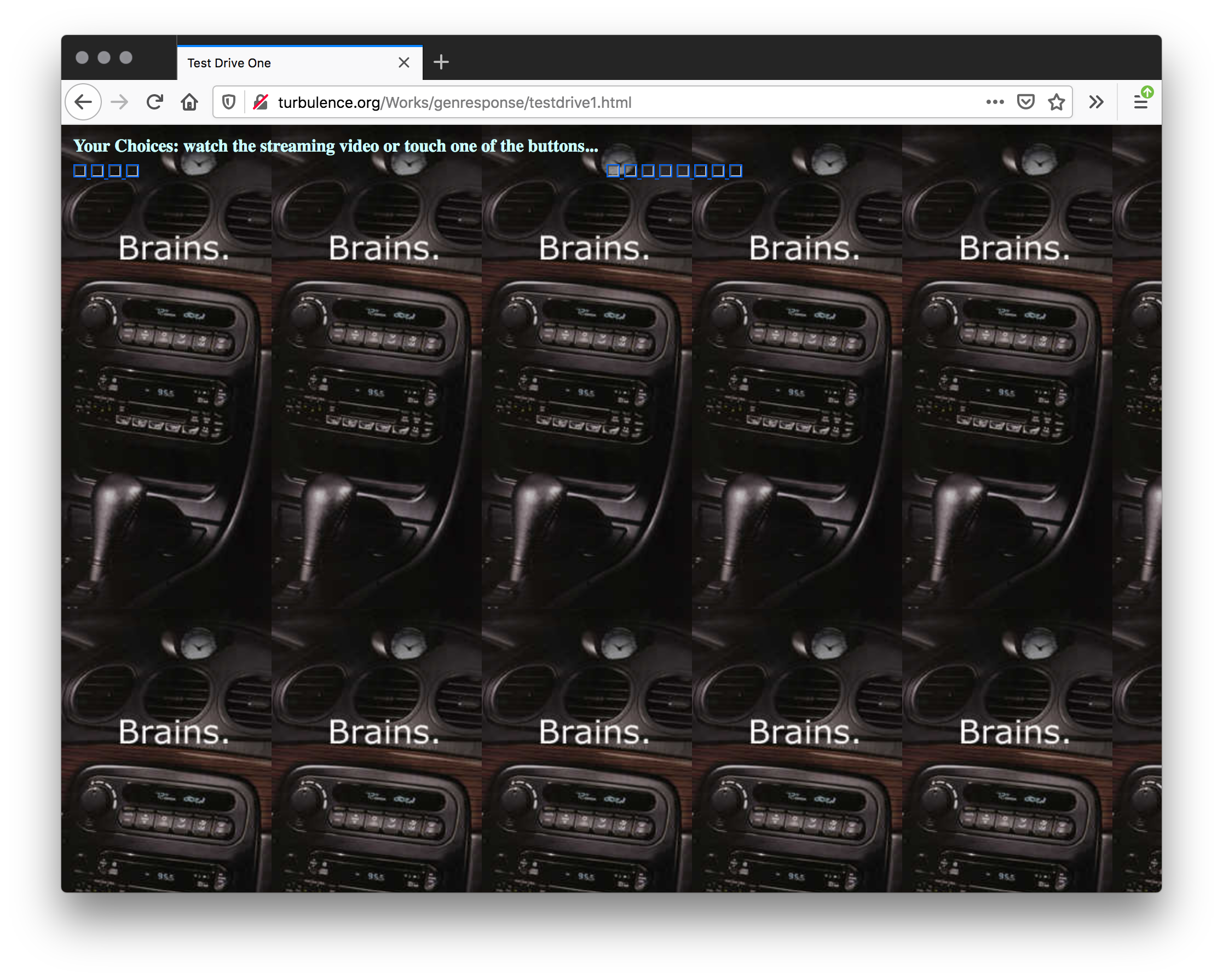
Screenshot, 2020, Firefox v76.0.1 on Mac OS 10.13.3; http://turbulence.org/Works/genresponse/testdrive1.html
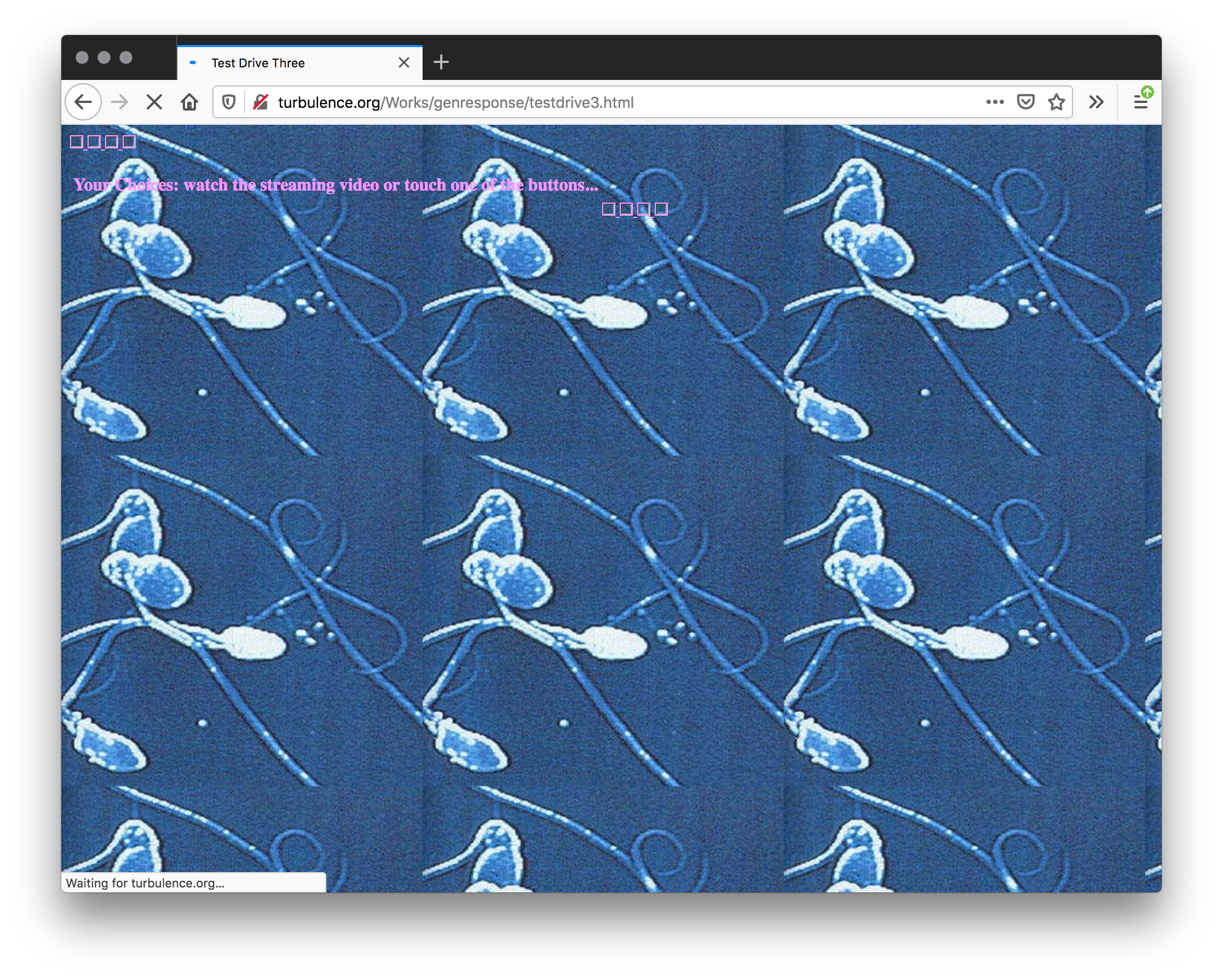
Screenshot, 2020, Firefox v76.0.1 on Mac OS 10.13.3; http://turbulence.org/Works/genresponse/testdrive3.html
evolution isn’t what it used to be
image is everything
mirrors that wander and remember
correcting the code
2000, Diane Ludin, https://turbulence.org/Works/genresponse/, transcription from secondary pages, demo1.html, demo2.html, demo3.html, demo4.html

Screenshot, 2020, Firefox v76.0.1 on Mac OS 10.13.3; http://turbulence.org/Works/genresponse/index.html
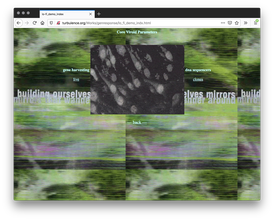
Screenshot, 2020, Firefox v76.0.1 on Mac OS 10.13.3; http://turbulence.org/Works/genresponse/lo_fi_demo_indx.html
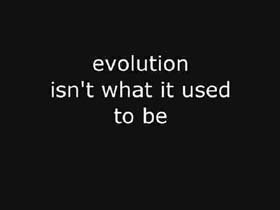
artifact from http://turbulence.org/Works/genresponse/demo1.html
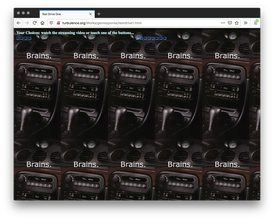
Screenshot, 2020, Firefox v76.0.1 on Mac OS 10.13.3; http://turbulence.org/Works/genresponse/testdrive1.html
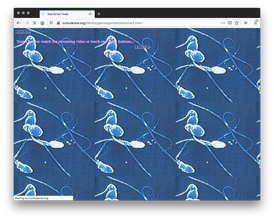
Screenshot, 2020, Firefox v76.0.1 on Mac OS 10.13.3; http://turbulence.org/Works/genresponse/testdrive3.html
(196)
2000
UNNInetwork [언니네]
UNNInetwork (언니네트워크) is a NGO dedicated to feminist cultural activism in South Korea. Korean women use the term “unni” (언니) to refer to their elder sister or another women who is on friendly terms with them; in other words, “unni'' symbolizes the intimacy and sisterhood between women. We named ourselves UNNInetwork (unni+network) to show that we value mutual support, empathy, and solidarity among women.
2000, http://www.unninet.net/, referred by Soyoung Chong
https://ko.wikipedia.org/wiki/%EC%96%B8%EB%8B%88%EB%84%A4
South Korea
UNNInetwork (언니네트워크) is a NGO dedicated to feminist cultural activism in South Korea. Korean women use the term “unni” (언니) to refer to their elder sister or another women who is on friendly terms with them; in other words, “unni'' symbolizes the intimacy and sisterhood between women. We named ourselves UNNInetwork (unni+network) to show that we value mutual support, empathy, and solidarity among women.
2000, http://www.unninet.net/, referred by Soyoung Chong
https://ko.wikipedia.org/wiki/%EC%96%B8%EB%8B%88%EB%84%A4
South Korea
(197)
2000
사이버 공간에서의 여성 세력화를 위하여 [For Women’s Empowerment in Cyberspace conference]
Hyosun Kim (김효선), Jun Eung Hwi (전응휘), Hyun Yung Kim (김현영), Inhwa Lee (이인화)
한편 전응휘 사무처장은 현재 사이버상에서 시민사회운동이 봉착한 문제점으로 오프라인과 온라인을 연결할 고리가 없다는 점을 꼽았다. 온라인 시민운동이 대중적 지지를 확보한 반면 문제해결 능력이 없는 것에 비해 오프라인의 운동은 문제해결능력은 탁월하지만 대중적 지지 기반이 희박하다는 것. 그러면서 전응휘씨는 오프라인에서 대중적으로 성공한 ‘생활협동운동’ 방식을 온라인에 도입하는 방안을 대안으로 제안했다. 협업운동 방식을 도입하여 여성 사이버 커뮤니티를 대중적인 여성운동의 조직틀로 구축하자는 얘기다.
On the other hand, Secretary-General Jeon Eung-hui pointed out that there is no link between offline and online due to the problems facing the civil society movement on the cyber. While online civic movements have gained popular support, while offline campaigns have excellent problem-solving abilities, offline support is sparse. At the same time, Mr. Eung-hui Jeon suggested an alternative to introducing the “life cooperative movement” method, which was popular in the offline world. This is to introduce a collaborative movement method to establish a female cyber community as an organizational framework for popular women’s movements.
2000, 김효선 [Hyosun Kim], 전응휘 [Jun Eung Hwi], 김현영 [Hyun Yung Kim] and 이인화 [Inhwa Lee]; excerpt from B.J. Choi, “여론형성 능력 키우며 재미있게 운동하자 [Let’s Have Fun While Improving Our Ability to Form Public Opinion],” The Women’s News, May 12, 2005; referred by Soyoung Chong
http://www.womennews.co.kr/news/articleView.html?idxno=10251 https://femiwiki.com/w/%EC%82%AC%EC%9D%B4%EB%B2%84_%EA%B3%B5%EA%B0%84%EC%97%90%EC%84%9C%EC%9D%98_%EC%97%AC%EC%84%B1_%EC%84%B8%EB%A0%A5%ED%99%94%EB%A5%BC_%EC%9C%84%ED%95%98%EC%97%AC
South Korea
한편 전응휘 사무처장은 현재 사이버상에서 시민사회운동이 봉착한 문제점으로 오프라인과 온라인을 연결할 고리가 없다는 점을 꼽았다. 온라인 시민운동이 대중적 지지를 확보한 반면 문제해결 능력이 없는 것에 비해 오프라인의 운동은 문제해결능력은 탁월하지만 대중적 지지 기반이 희박하다는 것. 그러면서 전응휘씨는 오프라인에서 대중적으로 성공한 ‘생활협동운동’ 방식을 온라인에 도입하는 방안을 대안으로 제안했다. 협업운동 방식을 도입하여 여성 사이버 커뮤니티를 대중적인 여성운동의 조직틀로 구축하자는 얘기다.
On the other hand, Secretary-General Jeon Eung-hui pointed out that there is no link between offline and online due to the problems facing the civil society movement on the cyber. While online civic movements have gained popular support, while offline campaigns have excellent problem-solving abilities, offline support is sparse. At the same time, Mr. Eung-hui Jeon suggested an alternative to introducing the “life cooperative movement” method, which was popular in the offline world. This is to introduce a collaborative movement method to establish a female cyber community as an organizational framework for popular women’s movements.
2000, 김효선 [Hyosun Kim], 전응휘 [Jun Eung Hwi], 김현영 [Hyun Yung Kim] and 이인화 [Inhwa Lee]; excerpt from B.J. Choi, “여론형성 능력 키우며 재미있게 운동하자 [Let’s Have Fun While Improving Our Ability to Form Public Opinion],” The Women’s News, May 12, 2005; referred by Soyoung Chong
http://www.womennews.co.kr/news/articleView.html?idxno=10251 https://femiwiki.com/w/%EC%82%AC%EC%9D%B4%EB%B2%84_%EA%B3%B5%EA%B0%84%EC%97%90%EC%84%9C%EC%9D%98_%EC%97%AC%EC%84%B1_%EC%84%B8%EB%A0%A5%ED%99%94%EB%A5%BC_%EC%9C%84%ED%95%98%EC%97%AC
South Korea
(198)
2000–
2019
Women of Uganda Network (WOUGNET)
WOUGNET’s mission is to promote and support the use of ICTs by women and women organizations in Uganda, so that they can take advantage of the opportunities presented by ICTs in order to effectively address national and local problems of sustainable development. The new ICTs, in particular, email and the Internet facilitate communication with each other and the international community. Indeed, access to information about best practices, appropriate technologies, ideas and problems of other groups working on similar concerns have been identified as critical information and communication needs of women organizations in Africa.
2000, https://web.archive.org/web/20060116034948/http://wougnet.org/
Uganda
WOUGNET’s mission is to promote and support the use of ICTs by women and women organizations in Uganda, so that they can take advantage of the opportunities presented by ICTs in order to effectively address national and local problems of sustainable development. The new ICTs, in particular, email and the Internet facilitate communication with each other and the international community. Indeed, access to information about best practices, appropriate technologies, ideas and problems of other groups working on similar concerns have been identified as critical information and communication needs of women organizations in Africa.
2000, https://web.archive.org/web/20060116034948/http://wougnet.org/
Uganda
(199)
2000
Guide to Geek Girls
Old Boys Network
So, your crush on Björk has finally died a whimpering death and you’re wondering where to go from here. All the scenester ladies are either dating a series of interchangeable high-school riot boys in skater uniform and an overdose of manic panic, or permanently shacked up with some bitter old gentleman who pays all the bills. Which will it be, a masculine prison or a humiliating one night stand? Into this void of potential mates comes a woman you may not have considered before, a woman of substance, quietude and stability, a cerebral creature with a culture all her own. In short, a geek girl.
2000, Old Boys Network, https://obn.org/guide/

Screenshot, 2020, Firefox v76.0.1 on Mac OS 10.13.3; https://www.obn.org/guide/

artifact from https://www.obn.org/guide/
So, your crush on Björk has finally died a whimpering death and you’re wondering where to go from here. All the scenester ladies are either dating a series of interchangeable high-school riot boys in skater uniform and an overdose of manic panic, or permanently shacked up with some bitter old gentleman who pays all the bills. Which will it be, a masculine prison or a humiliating one night stand? Into this void of potential mates comes a woman you may not have considered before, a woman of substance, quietude and stability, a cerebral creature with a culture all her own. In short, a geek girl.
2000, Old Boys Network, https://obn.org/guide/

Screenshot, 2020, Firefox v76.0.1 on Mac OS 10.13.3; https://www.obn.org/guide/

artifact from https://www.obn.org/guide/
(200)
2000
Hacking Seductions as Art
Cornelia Sollfrank, Jenny Marketou
Jenny Marketou: The computer underworld is populated with young men and (almost no women) who live out their fantasies of power and glory on a keyboard. Of course, computer hacking requires technical skills, compulsive digital virtuosity and addiction.
Cornelia Sollfrank: You say to “hack into something,” so there has to be something there, i.e. a system of some kind that you can “hack into.” What is the relation or what might be the motivation for breaking into a system which already exists, and make changes to it, whether it is a technological system, a server, a computer network, or even a cultural system?
JM: I have come to think of “hacking” both as an important phenomenon and as a metaphor for how we digitally manipulate and think through the electronic culture that engulfs us and how this demonstration of virtuosity can be addressed in the arena of theoretical, and cultural politics and esthetics. I believe hacking is a form of cultural activism, as a syntax for resistance and critical discourse.
2000, Jenny Marketou, interview by Cornelia Sollfrank, Hamburg, Germany, July 25, 2000, transcript, Old Boys Network, https://obn.org/obn/inhalt_index.html
https://www.obn.org/reading_room/interviews/html/jenny.html
Jenny Marketou: The computer underworld is populated with young men and (almost no women) who live out their fantasies of power and glory on a keyboard. Of course, computer hacking requires technical skills, compulsive digital virtuosity and addiction.
Cornelia Sollfrank: You say to “hack into something,” so there has to be something there, i.e. a system of some kind that you can “hack into.” What is the relation or what might be the motivation for breaking into a system which already exists, and make changes to it, whether it is a technological system, a server, a computer network, or even a cultural system?
JM: I have come to think of “hacking” both as an important phenomenon and as a metaphor for how we digitally manipulate and think through the electronic culture that engulfs us and how this demonstration of virtuosity can be addressed in the arena of theoretical, and cultural politics and esthetics. I believe hacking is a form of cultural activism, as a syntax for resistance and critical discourse.
2000, Jenny Marketou, interview by Cornelia Sollfrank, Hamburg, Germany, July 25, 2000, transcript, Old Boys Network, https://obn.org/obn/inhalt_index.html
https://www.obn.org/reading_room/interviews/html/jenny.html
(201)
2000
I.K.U.
Shu Lea Cheang
Cheang defines I.K.U. precisely: it’s a porn film that takes up where Blade Runner (1982) left off. The elevator door that closed now re-opens. A new corporation has taken over. The I.K.U. characters have names, identities, and missions, but I don’t think the story is the point, however carefully calibrated it may be. Narrative, which once was the weak spot in Cheang’s work, has become its strength. Or, rather, it is the very absence of narrative that has now supercharged her work, suffusing its every choice. Cheang’s mix of sensation and suggestion is perfectly suited to the post-hypertext world of post-verbal storytelling. What’s most intriguing about I.K.U. is its daring disposal of older forms and its unabashed effort to pioneer a visual text in which pornography and science fiction, film and video and computer, matinee and late-night, gallery and porn arcade, all merge into a single movie experience.
2000, Shu Lea Cheang, dir. (2000; Tokyo: Uplink, 2001), 74 min.; excerpt from B. Ruby Rich, “‘Bodies Are Packages Made to Be Opened’: Shu Lea Cheang’s ‘I.K.U.’ (2000),” Rhizome, May 26, 2015, https://rhizome.org/editorial/2015/may/26/iku-experience-shu-lea-cheang-phenomenon/; referred by Melanie Hoff
https://vimeo.com/128504946 https://vimeo.com/128507307
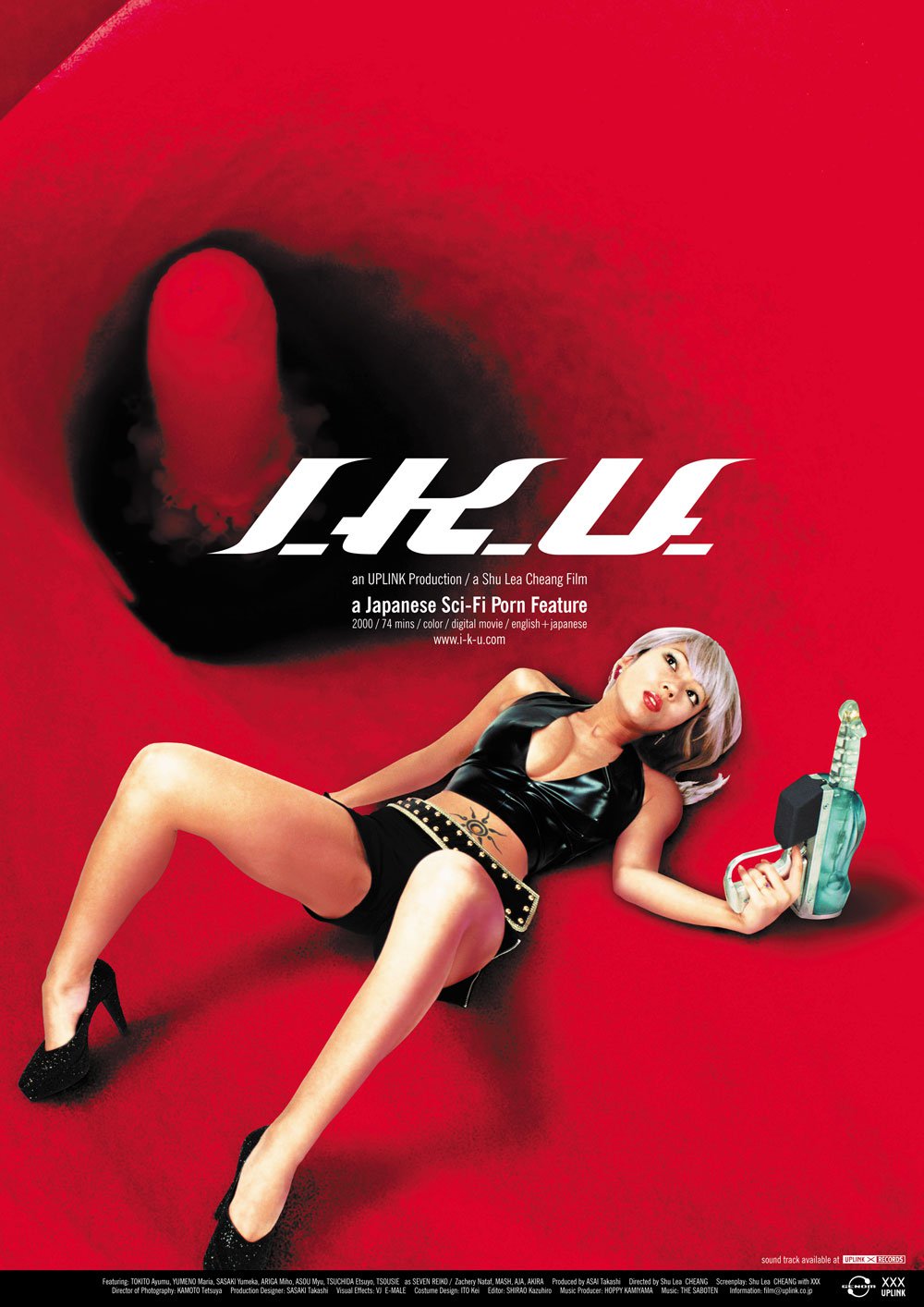
Poster still from https://rhizome.org/editorial/2015/may/26/iku-experience-shu-lea-cheang-phenomenon/
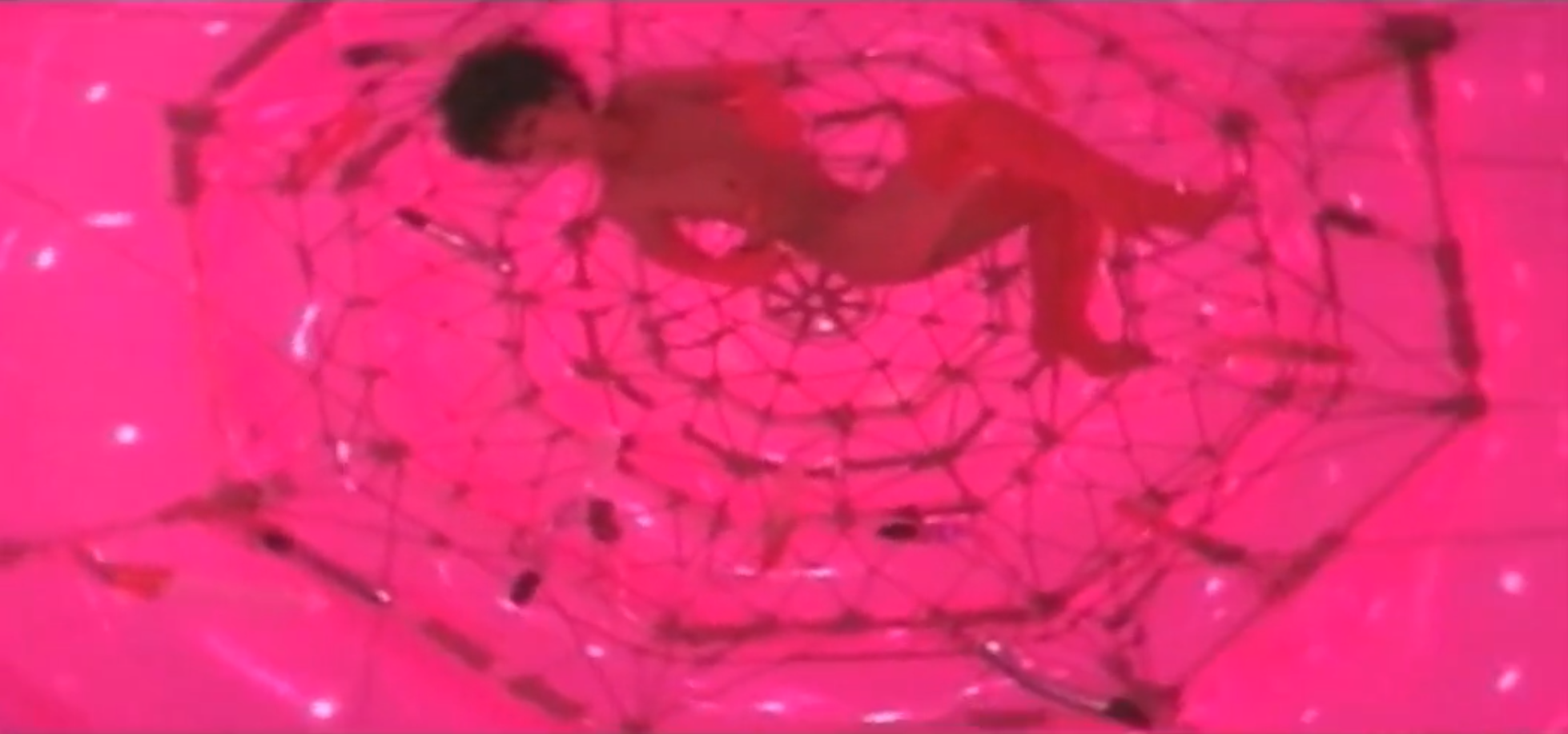
still 00:08, https://vimeo.com/128504946
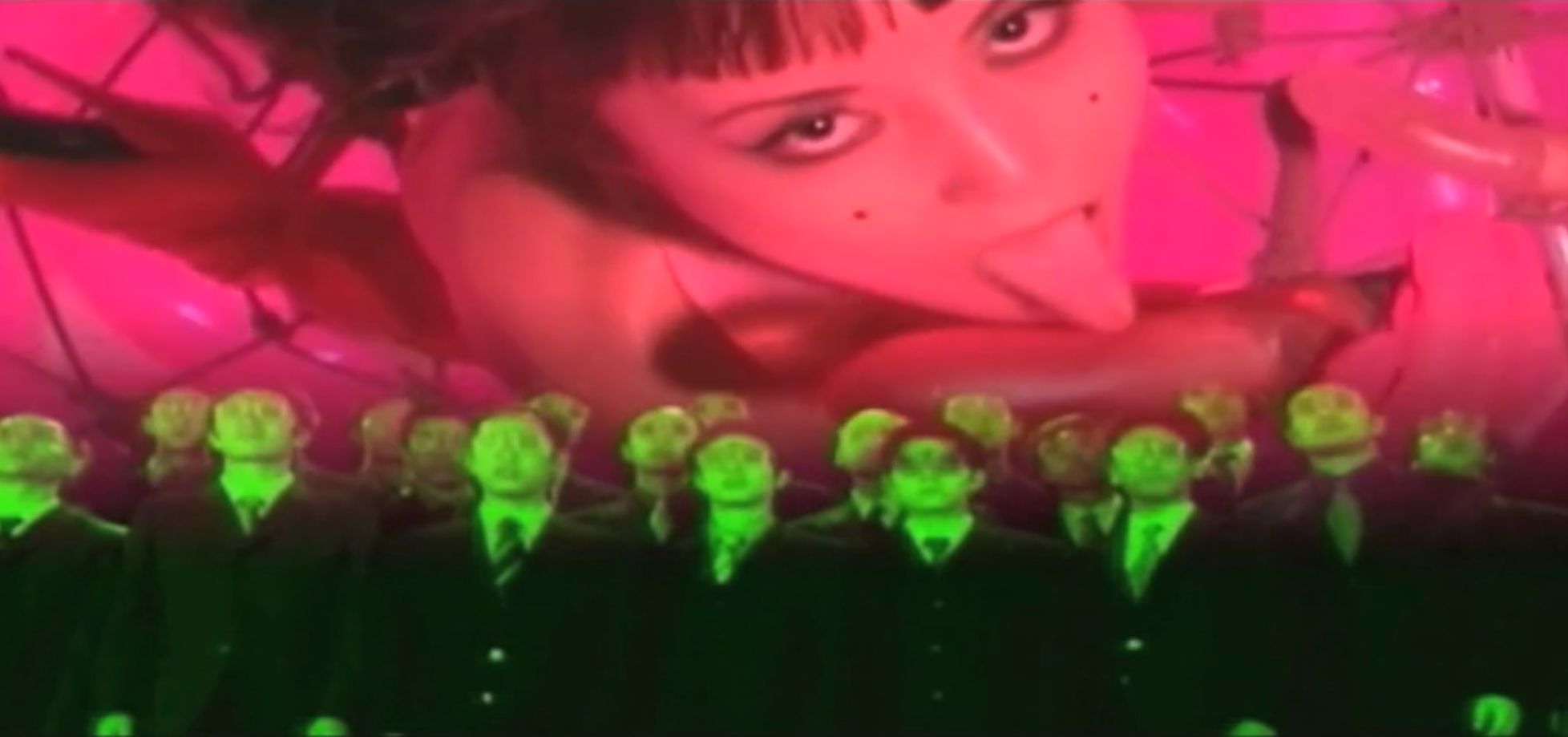
still 00:29, https://vimeo.com/128504946
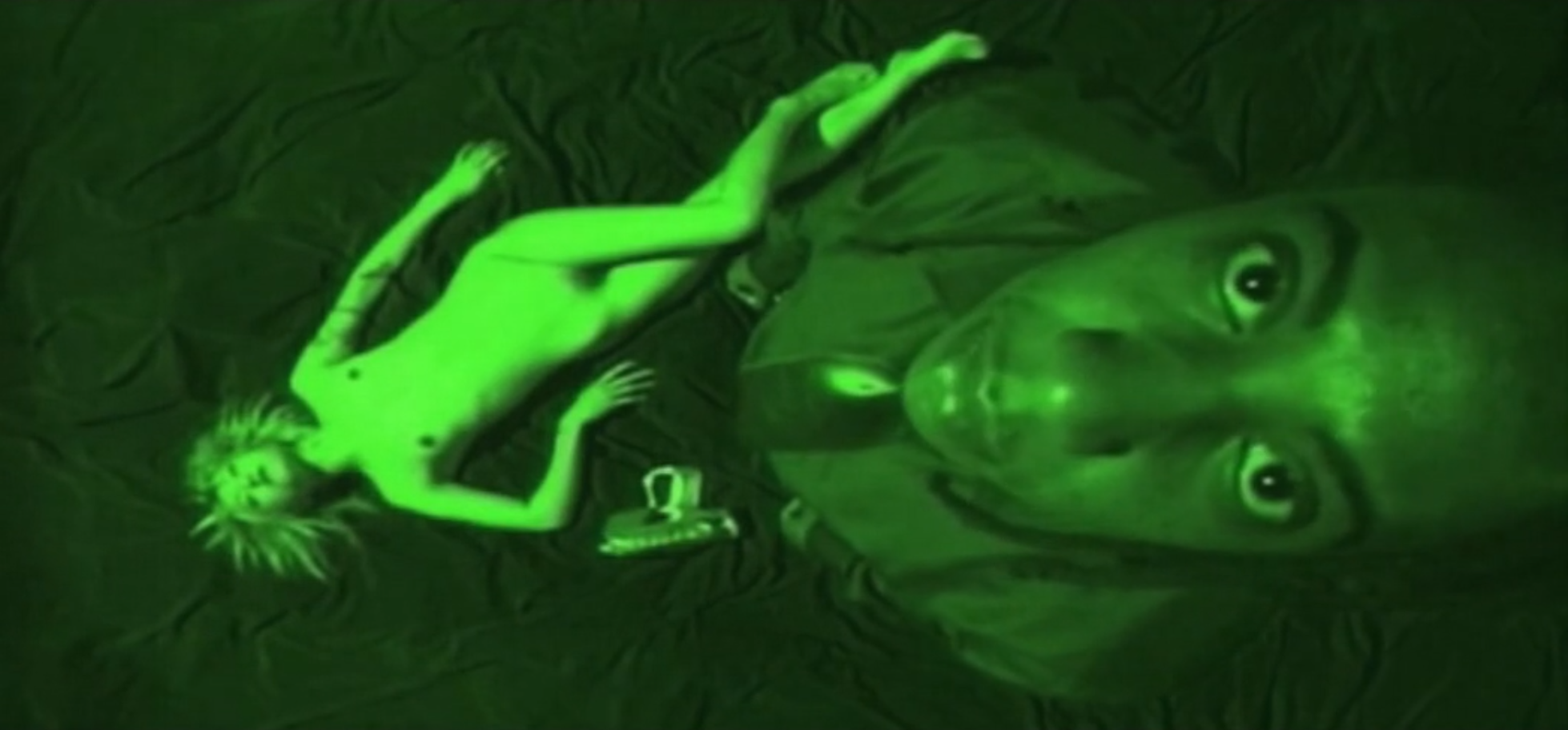
still 00:27, https://vimeo.com/128507307

still 00:37, https://vimeo.com/128507307

still 01:11, https://vimeo.com/128507307
Cheang defines I.K.U. precisely: it’s a porn film that takes up where Blade Runner (1982) left off. The elevator door that closed now re-opens. A new corporation has taken over. The I.K.U. characters have names, identities, and missions, but I don’t think the story is the point, however carefully calibrated it may be. Narrative, which once was the weak spot in Cheang’s work, has become its strength. Or, rather, it is the very absence of narrative that has now supercharged her work, suffusing its every choice. Cheang’s mix of sensation and suggestion is perfectly suited to the post-hypertext world of post-verbal storytelling. What’s most intriguing about I.K.U. is its daring disposal of older forms and its unabashed effort to pioneer a visual text in which pornography and science fiction, film and video and computer, matinee and late-night, gallery and porn arcade, all merge into a single movie experience.
2000, Shu Lea Cheang, dir. (2000; Tokyo: Uplink, 2001), 74 min.; excerpt from B. Ruby Rich, “‘Bodies Are Packages Made to Be Opened’: Shu Lea Cheang’s ‘I.K.U.’ (2000),” Rhizome, May 26, 2015, https://rhizome.org/editorial/2015/may/26/iku-experience-shu-lea-cheang-phenomenon/; referred by Melanie Hoff
https://vimeo.com/128504946 https://vimeo.com/128507307

Poster still from https://rhizome.org/editorial/2015/may/26/iku-experience-shu-lea-cheang-phenomenon/
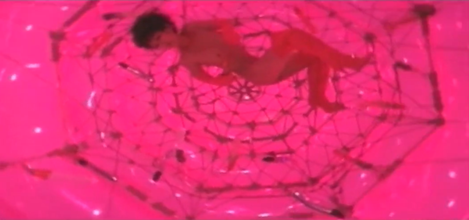
still 00:08, https://vimeo.com/128504946
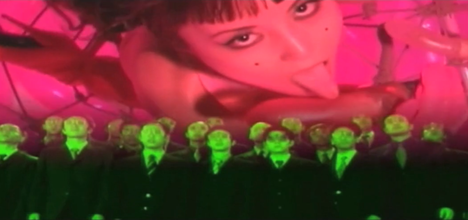
still 00:29, https://vimeo.com/128504946

still 00:27, https://vimeo.com/128507307
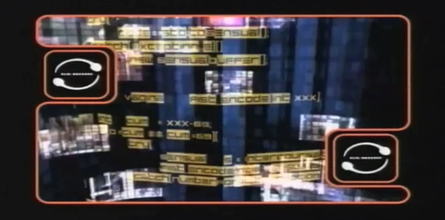
still 00:37, https://vimeo.com/128507307
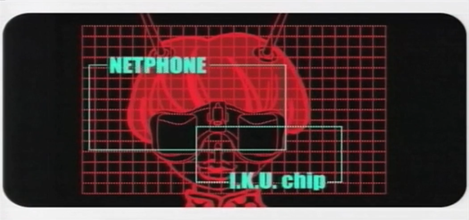
still 01:11, https://vimeo.com/128507307
(202)
2000
Have Script, Will Destroy!
Cornelia Sollfrank, Clara G. Sopht
Cornelia Sollfrank: Clara, would you call yourself a hacker?
Clara G. Sopht: No. Always the same stupid question. I guess there are some hackers who would call me a “hacker,” others would call me “cracker” and others just “lazy-assed destroyer.” There are a lot of dirty names for people like me, but I don’t care.
CS: From what you said about the congress, I conclude that you are mostly interested in the political aspects of information technology.
CGS: Every aspect of information technology is political. And it is definitely true that I’m very much concerned with the idea of resistance and political activism on the Net—the electronic underground. Hackers are the spearhead of a new form of resistance. They have an enormous political potential, although most of them aren’t aware of it. And there are also other political activists who fight for goals outside the Net, and use the Net as the site for their dissent.
2000, Clara G. Sopht, interview by Cornelia Sollfrank, Berlin, Germany, February 2000, transcript, Old Boys Network, https://obn.org/hackers/claint.htm; referred by Cornelia Sollfrank
http://www.vdb.org/titles/have-script-will-destroy
Cornelia Sollfrank: Clara, would you call yourself a hacker?
Clara G. Sopht: No. Always the same stupid question. I guess there are some hackers who would call me a “hacker,” others would call me “cracker” and others just “lazy-assed destroyer.” There are a lot of dirty names for people like me, but I don’t care.
CS: From what you said about the congress, I conclude that you are mostly interested in the political aspects of information technology.
CGS: Every aspect of information technology is political. And it is definitely true that I’m very much concerned with the idea of resistance and political activism on the Net—the electronic underground. Hackers are the spearhead of a new form of resistance. They have an enormous political potential, although most of them aren’t aware of it. And there are also other political activists who fight for goals outside the Net, and use the Net as the site for their dissent.
2000, Clara G. Sopht, interview by Cornelia Sollfrank, Berlin, Germany, February 2000, transcript, Old Boys Network, https://obn.org/hackers/claint.htm; referred by Cornelia Sollfrank
http://www.vdb.org/titles/have-script-will-destroy
(203)
2000
VeloCity
Tina Escaja
Su tríptico VeloCity multiplica instancias y opciones, en una escalada de palabras que se suceden al ritmo interno de la lectura poética. Ciertas falacias digitales se cuestionan a su vez […] El lector-internauta al que apela la Pérez tiene opciones limitadas. La autora dicta, ejerce de arquitecta en un engranaje de enlaces y bits que contradicen la presunta fluidez, a-linealidad, des-control tanto del acto poético hipertextual como de la imbricación considerada femenina. Rompe expectativas. Y ese acto de control que se dice ejerce novedosamente el lector o lectora ante el hipertexto les libera del papel tradicional pasivo, les convierte en centro de elecciones y partícipes de la creación. […] Su trabajo VeloCity consiste precisamente en convocar, en accederse al cibernauta, celebrando al mismo tiempo el acto total de la comunicación electrónica, ciberfísica, ese encuentro entre el verbo y los nodos, entre la lengua y los sistemas operativos.
The triptych of VeloCity multiplies instances and options, in an escalation of words that follow the internal rhythm of the poetic reading. Certain digital fallacies are questioned in turn […] The reader-surfer to whom Pérez appeals has limited options. The author dictates, acts as an architect in a network of links and bits that contradict the presumed fluidity, a-linearity, uncontrolled hypertextual poetic act as well as the imbrication considered feminine. She breaks expectations. And that act of control that is said to be exercised in a novel way by the reader in the face of hypertext frees them from the traditional passive role, turns them into a center of choices and participants in creation. […] Her work VeloCity consists precisely in summoning, in gaining access to the netizen, celebrating at the same time the total act of electronic, cyber-physical communication, that meeting between the verb and the nodes, between the language and the operating systems.
2000, Tina Escaja (Alm@ Pérez); excerpt from Tina Escaja, “Ciber/reflexiones,” Espacio Luke, http://www.espacioluke.com/2005/Diciembre2005/tina.html
https://proyecto.w3.uvm.edu/velocity/SumergidaEspanolNYU/SumergidaEspanolNYU.php
Su tríptico VeloCity multiplica instancias y opciones, en una escalada de palabras que se suceden al ritmo interno de la lectura poética. Ciertas falacias digitales se cuestionan a su vez […] El lector-internauta al que apela la Pérez tiene opciones limitadas. La autora dicta, ejerce de arquitecta en un engranaje de enlaces y bits que contradicen la presunta fluidez, a-linealidad, des-control tanto del acto poético hipertextual como de la imbricación considerada femenina. Rompe expectativas. Y ese acto de control que se dice ejerce novedosamente el lector o lectora ante el hipertexto les libera del papel tradicional pasivo, les convierte en centro de elecciones y partícipes de la creación. […] Su trabajo VeloCity consiste precisamente en convocar, en accederse al cibernauta, celebrando al mismo tiempo el acto total de la comunicación electrónica, ciberfísica, ese encuentro entre el verbo y los nodos, entre la lengua y los sistemas operativos.
The triptych of VeloCity multiplies instances and options, in an escalation of words that follow the internal rhythm of the poetic reading. Certain digital fallacies are questioned in turn […] The reader-surfer to whom Pérez appeals has limited options. The author dictates, acts as an architect in a network of links and bits that contradict the presumed fluidity, a-linearity, uncontrolled hypertextual poetic act as well as the imbrication considered feminine. She breaks expectations. And that act of control that is said to be exercised in a novel way by the reader in the face of hypertext frees them from the traditional passive role, turns them into a center of choices and participants in creation. […] Her work VeloCity consists precisely in summoning, in gaining access to the netizen, celebrating at the same time the total act of electronic, cyber-physical communication, that meeting between the verb and the nodes, between the language and the operating systems.
2000, Tina Escaja (Alm@ Pérez); excerpt from Tina Escaja, “Ciber/reflexiones,” Espacio Luke, http://www.espacioluke.com/2005/Diciembre2005/tina.html
https://proyecto.w3.uvm.edu/velocity/SumergidaEspanolNYU/SumergidaEspanolNYU.php
(204)
2000
Of Shifting Shadows
Gita Hashemi
i want to delimit a space-time in which to wander this medium of duality,
of actuality,
and virtuality,
of physicality,
and spirituality,
of presentation,
and representation
2000, Gita Hashemi, https://ofshiftingshadows.gitaha.net/
Editor’s Note: Of Shifting Shadows was created in 2000 as an interactive CD-R. The web version is made in 2021 and is still in beta. —MS

2000, Gita Hashemi, https://ofshiftingshadows.gitaha.net/
i want to delimit a space-time in which to wander this medium of duality,
of actuality,
and virtuality,
of physicality,
and spirituality,
of presentation,
and representation
2000, Gita Hashemi, https://ofshiftingshadows.gitaha.net/
Editor’s Note: Of Shifting Shadows was created in 2000 as an interactive CD-R. The web version is made in 2021 and is still in beta. —MS

2000, Gita Hashemi, https://ofshiftingshadows.gitaha.net/
(205)
2000
Praise Songs & Installations
Mendi Obadike, Keith Obadike
The Praise Songs & Installations are a series of works dedicated to other artists or activists and their lasting impact on our consciousness and global culture. Some of these works are pop songs and others are large scale multichannel installations. Over the years we have created songs and sound installations for singer Marian Anderson, singer James Brown, artist Nam June Paik, filmmaker Marlon Riggs, writer Audre Lorde, writer Toni Morrison, scholar and activist Angela Davis, and writer James Baldwin.
Editor’s Note: This series includes Re: Construction (for Raymon Dones)(2019), a single channel sound installation in honor of Raymon Dones, the inventor of the first subwoofer and a civil rights activist; Blues Speaker [for James Baldwin] (2015), a 24-channel sound installation that uses the glass facade of The New Schools University Center to turn the building into a speaker; and Ring Shout (for Octavia Butler) (2016), a 4-channel sound installation that uses elements from an unpublished story by Octavia Butler found in her archives. —MS
2000, Mendi + Keith Obadike, sound installation series, https://obadike.squarespace.com/#/praisesongs/; submitted by Annie Goh
The Praise Songs & Installations are a series of works dedicated to other artists or activists and their lasting impact on our consciousness and global culture. Some of these works are pop songs and others are large scale multichannel installations. Over the years we have created songs and sound installations for singer Marian Anderson, singer James Brown, artist Nam June Paik, filmmaker Marlon Riggs, writer Audre Lorde, writer Toni Morrison, scholar and activist Angela Davis, and writer James Baldwin.
Editor’s Note: This series includes Re: Construction (for Raymon Dones)(2019), a single channel sound installation in honor of Raymon Dones, the inventor of the first subwoofer and a civil rights activist; Blues Speaker [for James Baldwin] (2015), a 24-channel sound installation that uses the glass facade of The New Schools University Center to turn the building into a speaker; and Ring Shout (for Octavia Butler) (2016), a 4-channel sound installation that uses elements from an unpublished story by Octavia Butler found in her archives. —MS
2000, Mendi + Keith Obadike, sound installation series, https://obadike.squarespace.com/#/praisesongs/; submitted by Annie Goh
(206)
2001
TechniColor: Race, Technology, and Everyday Life
Alondra Nelson, Thuy Linh N. Tu, Alicia Headlam Hines
Technicolor presents a full spectrum of stories about how people of color produce, transform, appropriate, and consume technologies in their everyday lives. In order to locate these stories, we found it necessary to use a broader understanding of technology, and to include not only those thought to create revolutions […], but also those with which people come in contact in their daily lives. For when we limit discussions about technology simply to computer hardware and software, we see only a “digital divide” that leaves people of color behind. […] And certainly we do not want to suggest that people of color all share the same relationship, historically or structurally, to technology. […] Yet to acknowledge the differences is not to understate the commonalities; people of color share histories of racial oppression and disenfranchisement that can be exacerbated by new technologies.
2001, Alondra Nelson, Thuy Linh N. Tu, and Alicia Headlam Hines, eds. (New York: New York University Press, 2001); excerpt from Alondra Nelson, Thuy Linh N. Tu, and Alicia Headlam Hines, introduction to Nelson et al., TechniColor, pp. 5–6
Contributors include Vivek Bald, Ben Chappell, Beth Coleman, McLean Greaves, Logan Hill, Alicia Headlam Hines, Karen Hossfeld, Amitava Kumar, Casey Man Kong Lum, Alondra Nelson, Mimi Nguyen, Guillermo Gómez-Peña, Tricia Rose, Andrew Ross, Thuy Linh Nguyen Tu, and Ben Williams.
https://nyupress.org/9780814736043/technicolor/
Technicolor presents a full spectrum of stories about how people of color produce, transform, appropriate, and consume technologies in their everyday lives. In order to locate these stories, we found it necessary to use a broader understanding of technology, and to include not only those thought to create revolutions […], but also those with which people come in contact in their daily lives. For when we limit discussions about technology simply to computer hardware and software, we see only a “digital divide” that leaves people of color behind. […] And certainly we do not want to suggest that people of color all share the same relationship, historically or structurally, to technology. […] Yet to acknowledge the differences is not to understate the commonalities; people of color share histories of racial oppression and disenfranchisement that can be exacerbated by new technologies.
2001, Alondra Nelson, Thuy Linh N. Tu, and Alicia Headlam Hines, eds. (New York: New York University Press, 2001); excerpt from Alondra Nelson, Thuy Linh N. Tu, and Alicia Headlam Hines, introduction to Nelson et al., TechniColor, pp. 5–6
Contributors include Vivek Bald, Ben Chappell, Beth Coleman, McLean Greaves, Logan Hill, Alicia Headlam Hines, Karen Hossfeld, Amitava Kumar, Casey Man Kong Lum, Alondra Nelson, Mimi Nguyen, Guillermo Gómez-Peña, Tricia Rose, Andrew Ross, Thuy Linh Nguyen Tu, and Ben Williams.
https://nyupress.org/9780814736043/technicolor/
(207)
2001
Very Cyberfeminist International
Old Boys Network
We have become aware of the ways in which cyberfeminism has become an influence within discursive fields of gender studies, media theory, political theory and action, concepts in art etc. and hope to contribute to the rise of cyberfeminist works and studies. Cyberfeminism is not merely enacted in these regions, the input of cyberfeminism alters the fields themselves and affects our attempt to map them and our activities within them. The term cyberfeminism literally means ‘feminism in relation to digital media’. As you will see in these articles, cyberfeminism is many things to many people, and we will not attempt to give a concise definition of it here.
2001, Old Boys Network, organizers (gathering, Lichtmess Kino, Hamburg, Germany, December 13–16, 2001), https://obn.org/obn/obn_pro/vCI/; excerpt from Helene von Oldenburg and Claudia Reiche, “Editorial,” in Very Cyberfeminist International Reader: obn Conference, Hamburg, December 13–16, 2001, eds. Helene von Oldenburg and Claudia Reiche (Berlin: b-books, 2001), p. 4
Participants include Action Tank, Andrea Sick, Ania Corcilius, Anne Hilde Neset, Annette Schindler, Ariane Brenssell, Barbara Thoens, Bildwechsel, Britta Bonifacius, Christina Goestl, Cindy Gabriela Flores, Claude Draude, Claudia Reiche, Corinna Bath, Cornelia Sollfrank, Elisabeth Strowick, Faith Wilding, Feminist Indymedia Austria, Galerie Helga Broll, Genderchangers Academy, Helene von Oldenburg, Irina Aristarkhova, Isabelle Massu, Janine Sack, Jill Scott, Jutta Weber, Lauren Cornell, Laurence Rassel, Les Pénélopes, Lina Dzuverovic-Russell, Lola Castro, Margaret Tan, Maria Fernandez, Nana Petzet, Nasya Bahfen, Natalie Bookchin, Nathalie Magnan, Noaltgirls (Lina Russell), Rachel Baker, RAWA, Rena Tangens, Rosanne Altstatt, Sara Platon, SubRosa, Susanna Paasonen, Synesthésie, TECHNO-TRICKSTER-TANK™, Uli Peter, Ulrike Bergermann, Verena Kuni, Virtuella, VNS Matrix, and Waltraud Schwab.
https://www.obn.org/obn_pro/vCI/ https://www.are.na/block/7803593
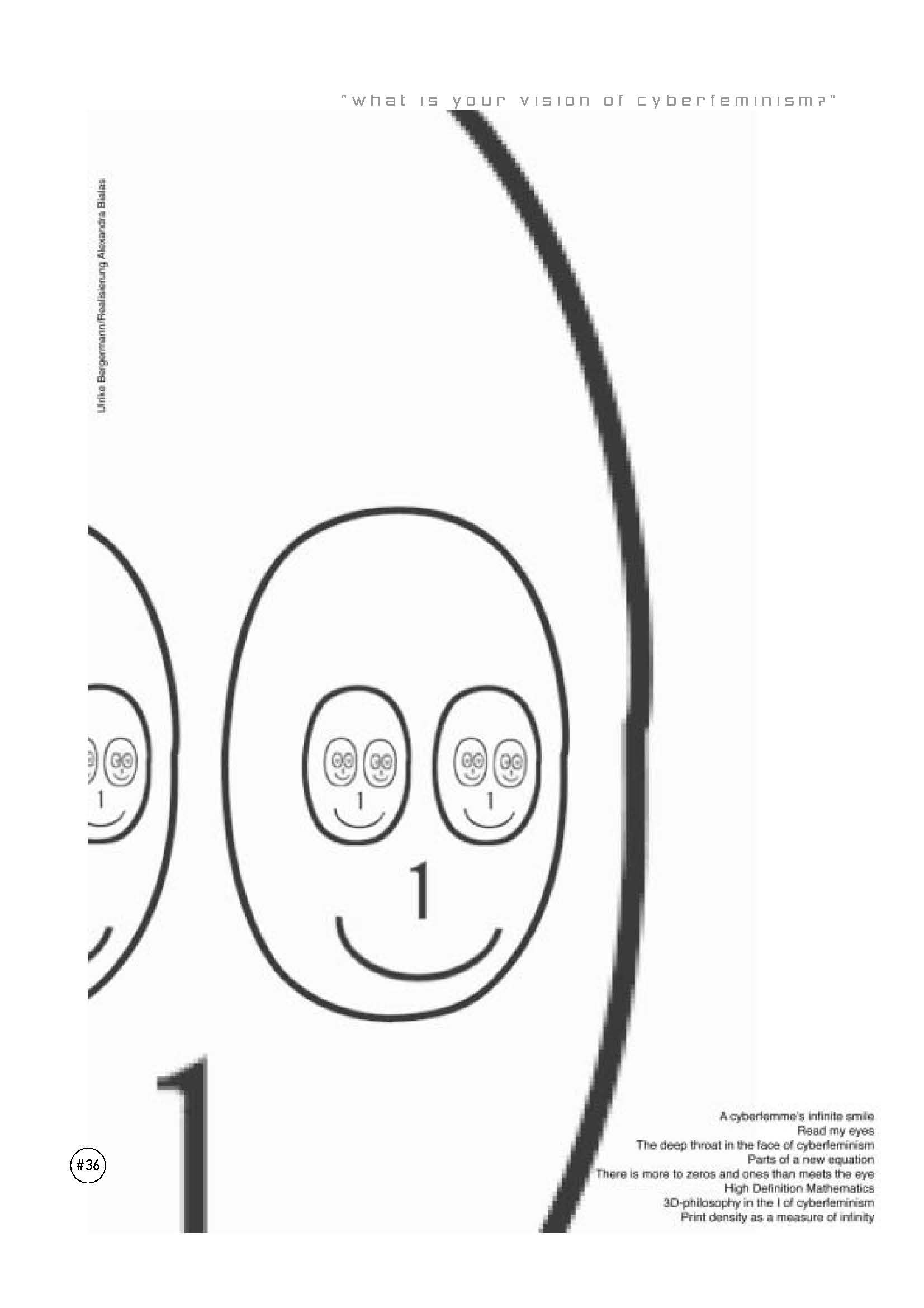
Very Cyberfeminist International conference catalog, p37, https://www.are.na/block/7803593
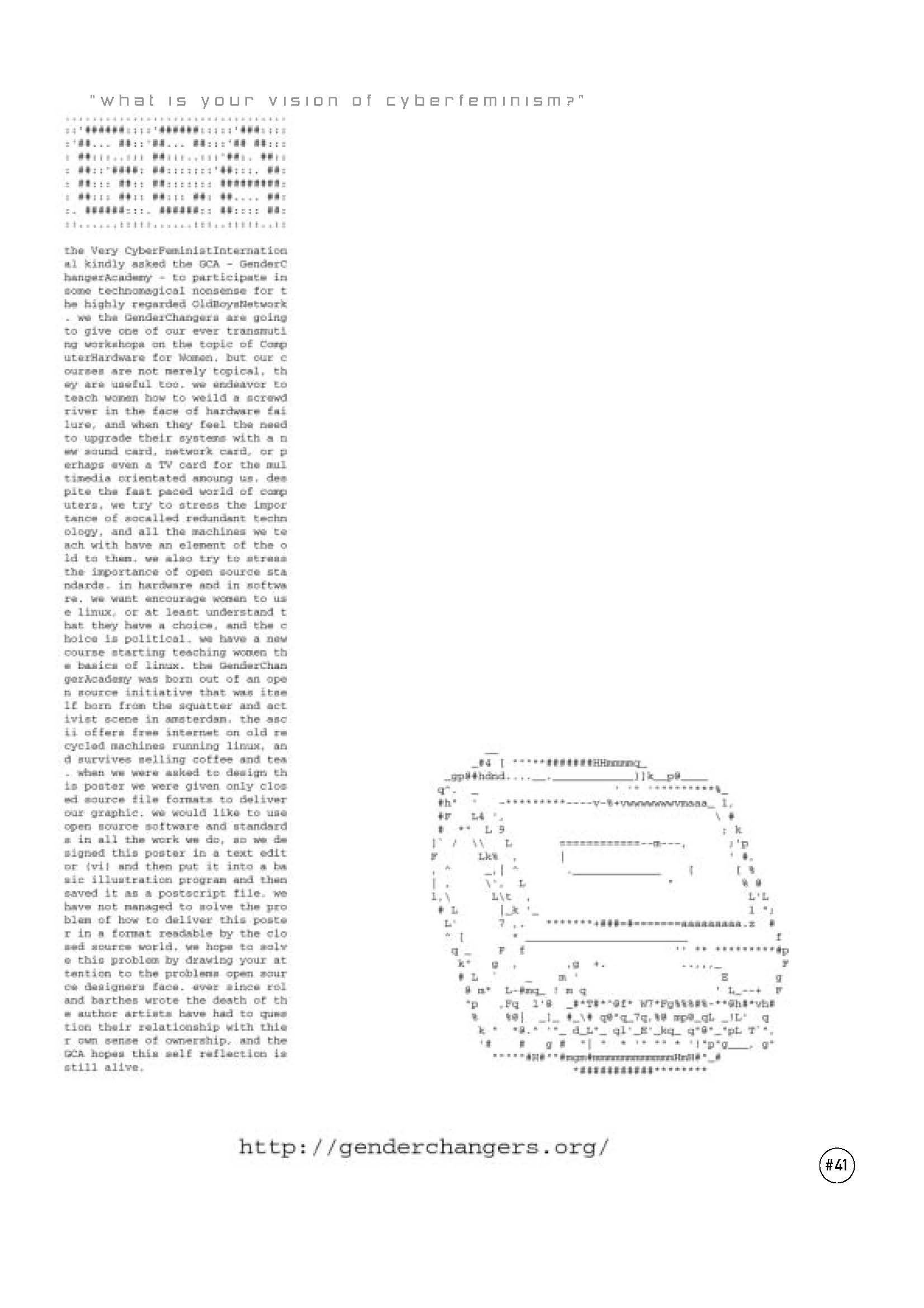
Very Cyberfeminist International conference catalog, p42, https://www.are.na/block/7803593
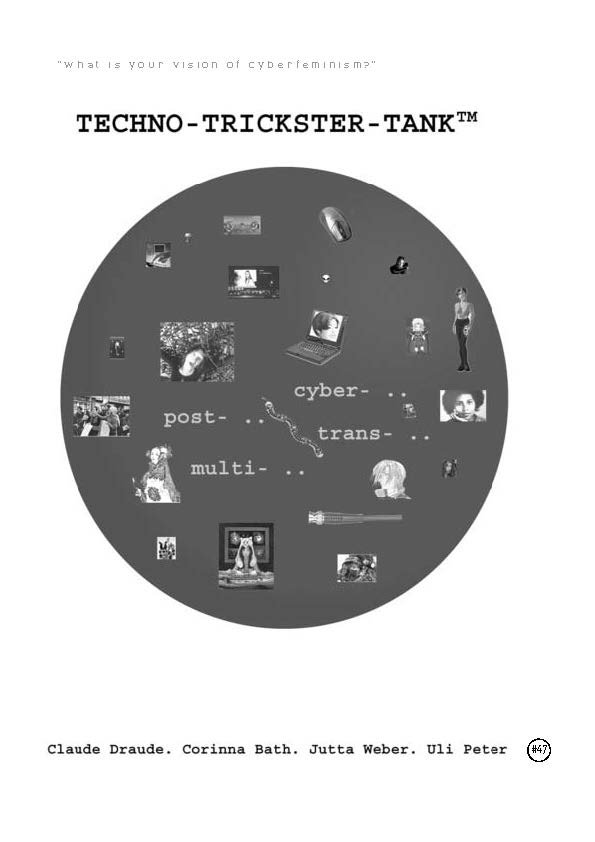
Very Cyberfeminist International conference catalog, p48, https://www.are.na/block/7803593

Very Cyberfeminist International conference catalog, p77, https://www.are.na/block/7803593

Very Cyberfeminist International conference catalog, p78, https://www.are.na/block/7803593
We have become aware of the ways in which cyberfeminism has become an influence within discursive fields of gender studies, media theory, political theory and action, concepts in art etc. and hope to contribute to the rise of cyberfeminist works and studies. Cyberfeminism is not merely enacted in these regions, the input of cyberfeminism alters the fields themselves and affects our attempt to map them and our activities within them. The term cyberfeminism literally means ‘feminism in relation to digital media’. As you will see in these articles, cyberfeminism is many things to many people, and we will not attempt to give a concise definition of it here.
2001, Old Boys Network, organizers (gathering, Lichtmess Kino, Hamburg, Germany, December 13–16, 2001), https://obn.org/obn/obn_pro/vCI/; excerpt from Helene von Oldenburg and Claudia Reiche, “Editorial,” in Very Cyberfeminist International Reader: obn Conference, Hamburg, December 13–16, 2001, eds. Helene von Oldenburg and Claudia Reiche (Berlin: b-books, 2001), p. 4
Participants include Action Tank, Andrea Sick, Ania Corcilius, Anne Hilde Neset, Annette Schindler, Ariane Brenssell, Barbara Thoens, Bildwechsel, Britta Bonifacius, Christina Goestl, Cindy Gabriela Flores, Claude Draude, Claudia Reiche, Corinna Bath, Cornelia Sollfrank, Elisabeth Strowick, Faith Wilding, Feminist Indymedia Austria, Galerie Helga Broll, Genderchangers Academy, Helene von Oldenburg, Irina Aristarkhova, Isabelle Massu, Janine Sack, Jill Scott, Jutta Weber, Lauren Cornell, Laurence Rassel, Les Pénélopes, Lina Dzuverovic-Russell, Lola Castro, Margaret Tan, Maria Fernandez, Nana Petzet, Nasya Bahfen, Natalie Bookchin, Nathalie Magnan, Noaltgirls (Lina Russell), Rachel Baker, RAWA, Rena Tangens, Rosanne Altstatt, Sara Platon, SubRosa, Susanna Paasonen, Synesthésie, TECHNO-TRICKSTER-TANK™, Uli Peter, Ulrike Bergermann, Verena Kuni, Virtuella, VNS Matrix, and Waltraud Schwab.
https://www.obn.org/obn_pro/vCI/ https://www.are.na/block/7803593
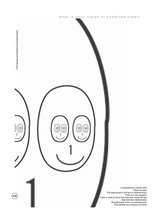
Very Cyberfeminist International conference catalog, p37, https://www.are.na/block/7803593
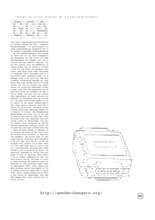
Very Cyberfeminist International conference catalog, p42, https://www.are.na/block/7803593
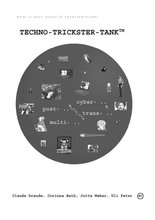
Very Cyberfeminist International conference catalog, p48, https://www.are.na/block/7803593

Very Cyberfeminist International conference catalog, p77, https://www.are.na/block/7803593

Very Cyberfeminist International conference catalog, p78, https://www.are.na/block/7803593
(208)
2001
/ETC (Eclectic Tech Carnival)
GenderChangers Academy
The Eclectic Tech Carnival (/ETC) is a gathering of feminists who critically explore and develop everyday skills and information technologies in the context of free software and open hardware. We chew on the roots of control and domination, disrupt patriarchal societies and imagine better alternatives. To do so we prioritise the participation of women and female identified, transgender and queer persons who want to learn from each other and amplify one another’s voices. The /ETC started with a group of women who felt the need to learn technical skills in our own spaces, unimpeded by the typical competitiveness of male geeks, trying things out and working through all our questions together with an open mind. Since 2001, the network of feminists who help organize the /ETC has grown both far and wide, responding and adapting to new contexts. We are geographically diverse and we have varied experiences and expertise in computing, technology, art and activism. Our long history of activity informs what, how and why we do what we do in different times and different places.
2001, Genderchangers Academy, https://eclectictechcarnival.org/
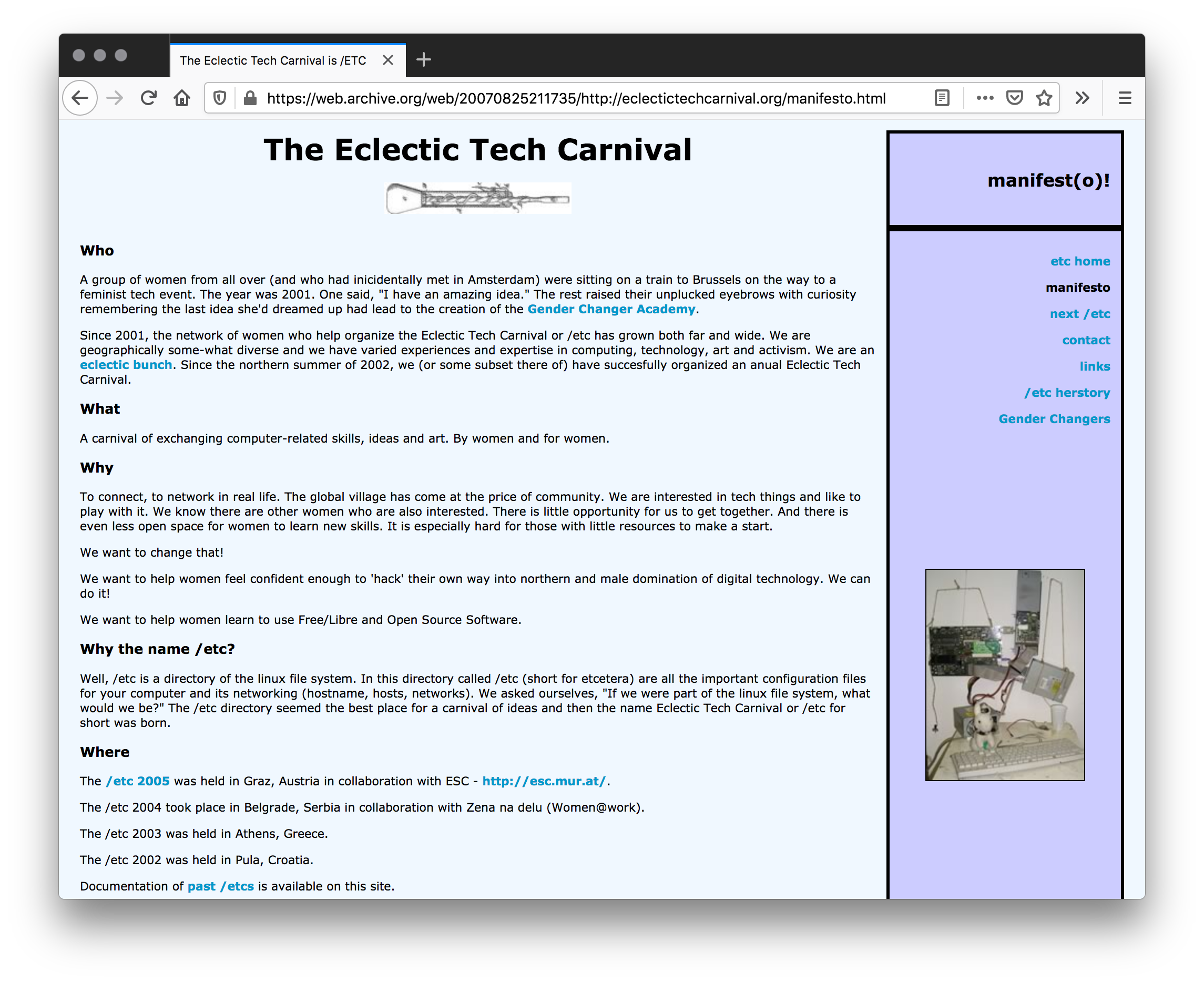
Wayback Machine, August 25, 2007; Screenshot, 2020, Firefox v76.0.1 on Mac OS 10.13.3; https://web.archive.org/web/20070825211735/http://eclectictechcarnival.org/manifesto.html
The Eclectic Tech Carnival (/ETC) is a gathering of feminists who critically explore and develop everyday skills and information technologies in the context of free software and open hardware. We chew on the roots of control and domination, disrupt patriarchal societies and imagine better alternatives. To do so we prioritise the participation of women and female identified, transgender and queer persons who want to learn from each other and amplify one another’s voices. The /ETC started with a group of women who felt the need to learn technical skills in our own spaces, unimpeded by the typical competitiveness of male geeks, trying things out and working through all our questions together with an open mind. Since 2001, the network of feminists who help organize the /ETC has grown both far and wide, responding and adapting to new contexts. We are geographically diverse and we have varied experiences and expertise in computing, technology, art and activism. Our long history of activity informs what, how and why we do what we do in different times and different places.
2001, Genderchangers Academy, https://eclectictechcarnival.org/
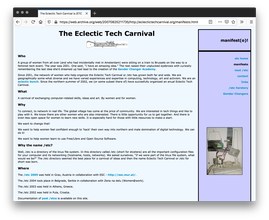
Wayback Machine, August 25, 2007; Screenshot, 2020, Firefox v76.0.1 on Mac OS 10.13.3; https://web.archive.org/web/20070825211735/http://eclectictechcarnival.org/manifesto.html
(209)
2001
Race For Cyberspace: Information Technology in the Black Diaspora
Ron Eglash, Julian Bleecker
Barbara Christian’s (1987) seminal essay, “The race for theory,” analyzed the ways in which the academic competition to create a theory of black women’s writing had overshadowed the potent theoretical content of the writing itself. Similarly, this essay examines how the hype over the application of new information technologies to racialized social problems has overshadowed the potent technological content of the communities themselves. Focusing on the black diaspora, we broaden the category of “information technology” to show how traditions of coding and computation from indigenous African practices and black appropriations of Euro-American technologies have supported, resisted, and fused with the cybernetic histories of the West: a potential source for changes in reconstructing identity, social position and access to power in communities of the black diaspora.
2001, Ron Eglash and Julian Bleecker, Science as Culture 10, no. 3 (2001): pp. 353–374; excerpt p. 353
Barbara Christian’s (1987) seminal essay, “The race for theory,” analyzed the ways in which the academic competition to create a theory of black women’s writing had overshadowed the potent theoretical content of the writing itself. Similarly, this essay examines how the hype over the application of new information technologies to racialized social problems has overshadowed the potent technological content of the communities themselves. Focusing on the black diaspora, we broaden the category of “information technology” to show how traditions of coding and computation from indigenous African practices and black appropriations of Euro-American technologies have supported, resisted, and fused with the cybernetic histories of the West: a potential source for changes in reconstructing identity, social position and access to power in communities of the black diaspora.
2001, Ron Eglash and Julian Bleecker, Science as Culture 10, no. 3 (2001): pp. 353–374; excerpt p. 353
(210)
2001
Data][h!][Bleeding Texts
Mez Breeze
.be [ah!ware] that the texts make use of the polysemic language/code system termed mezangelle, which evolved/s from multifarious email exchanges, computer code re:appropriation and net iconographs. to mezangelle means to take words/wordstrings/sentences and alter them in such a way as to extend and enhance meaning beyond the predicted or the expected. it's similar to making “plain” text hypertextual via the arrangement and dissection of words & n.sertion of symbolic and actual code manipulation. the use of fragments like programming language-shards & operating system echos... all act 2 illustrate the x.pansion of software potentialities of [code discourse] in an environment x.clusively reliant on it. mezangelling attempts to expand traditional text parameters through layered/alternative meanings embedded in languages and the codes that create them, with notions of language play, software n.vocations and identity swapping being the key to comprehension; various fiction avatars have been used in the construction of these texts, & they shift through many incarnations such as data[h!]bleeder, ms post modemism, mezflesque.exe, ova.kill, net.w][ho][urker, Purrsonal Areah Netwurker, etc.
2001, Mez Breeze, http://netwurkerz.de/mez/datableed/complete/
Editor’s Note: Some of the inline text styling was removed for this excerpt, due to the markdown used to make the Cyberfeminism Index.
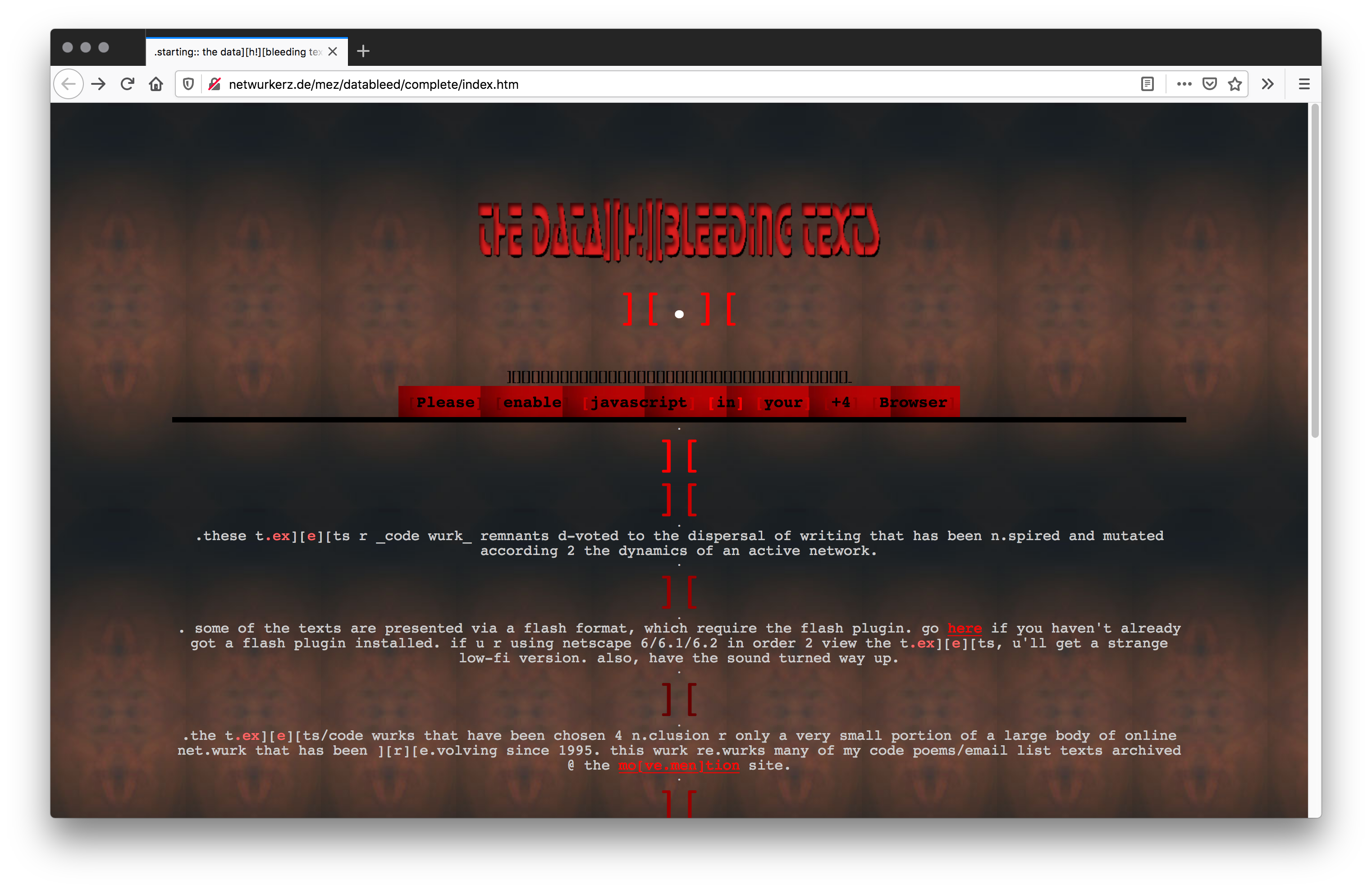
Screenshot, 2020, Firefox v76.0.1 on Mac OS 10.13.3; http://netwurkerz.de/mez/datableed/complete/index.htm
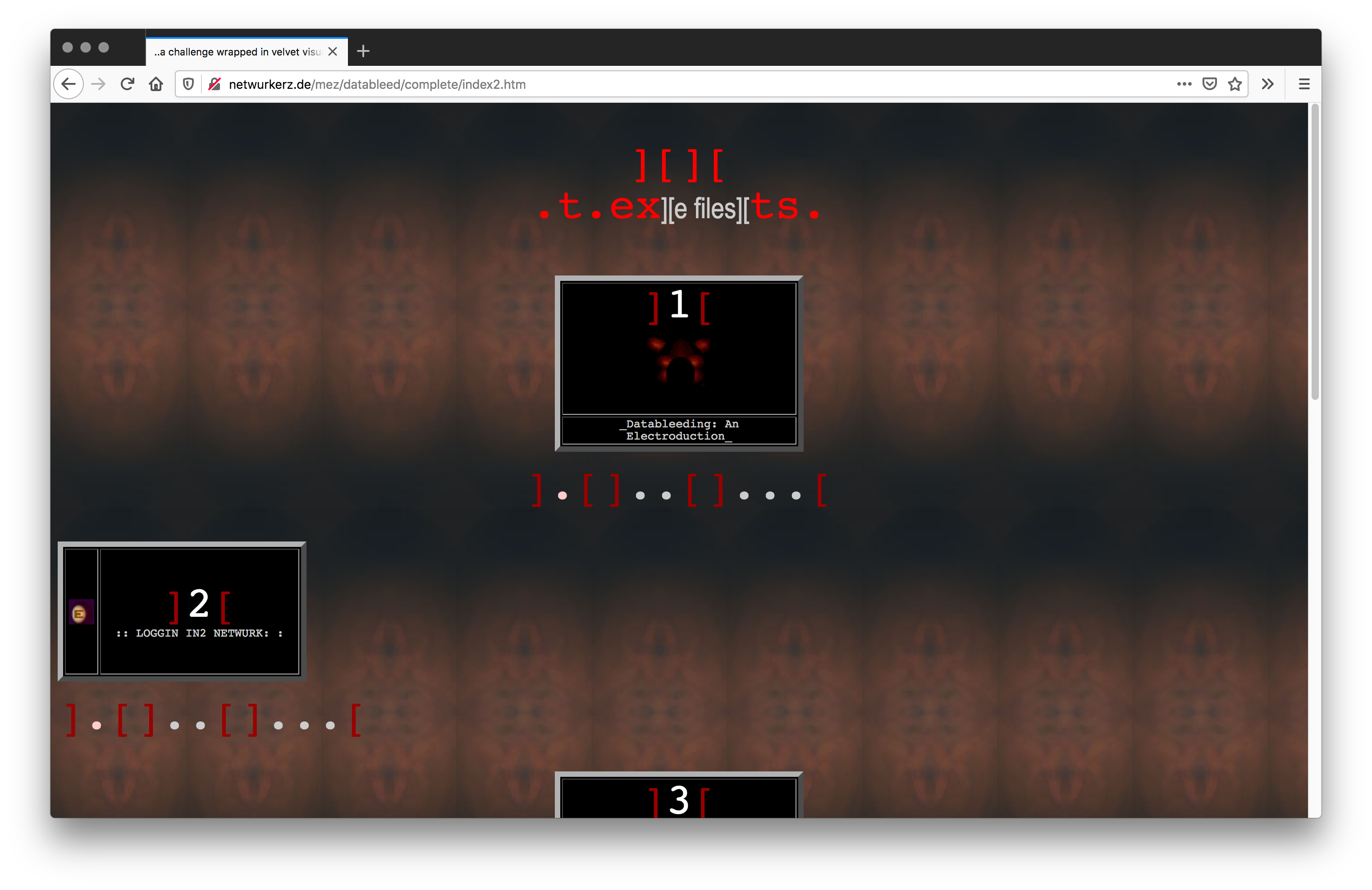
Screenshot, 2020, Firefox v76.0.1 on Mac OS 10.13.3; http://netwurkerz.de/mez/datableed/complete/index2.htm
![Screenshot of grey webpage with only an input form asking the user to share their childhood or secret][ed][ name and a "Cancel" or "OK" button below.](/media/images/mez-3.original_P1TDEDS.png)
Screenshot, 2020, Firefox v76.0.1 on Mac OS 10.13.3; netwurkerz.de/mez/datableed/complete/datahb1.htm
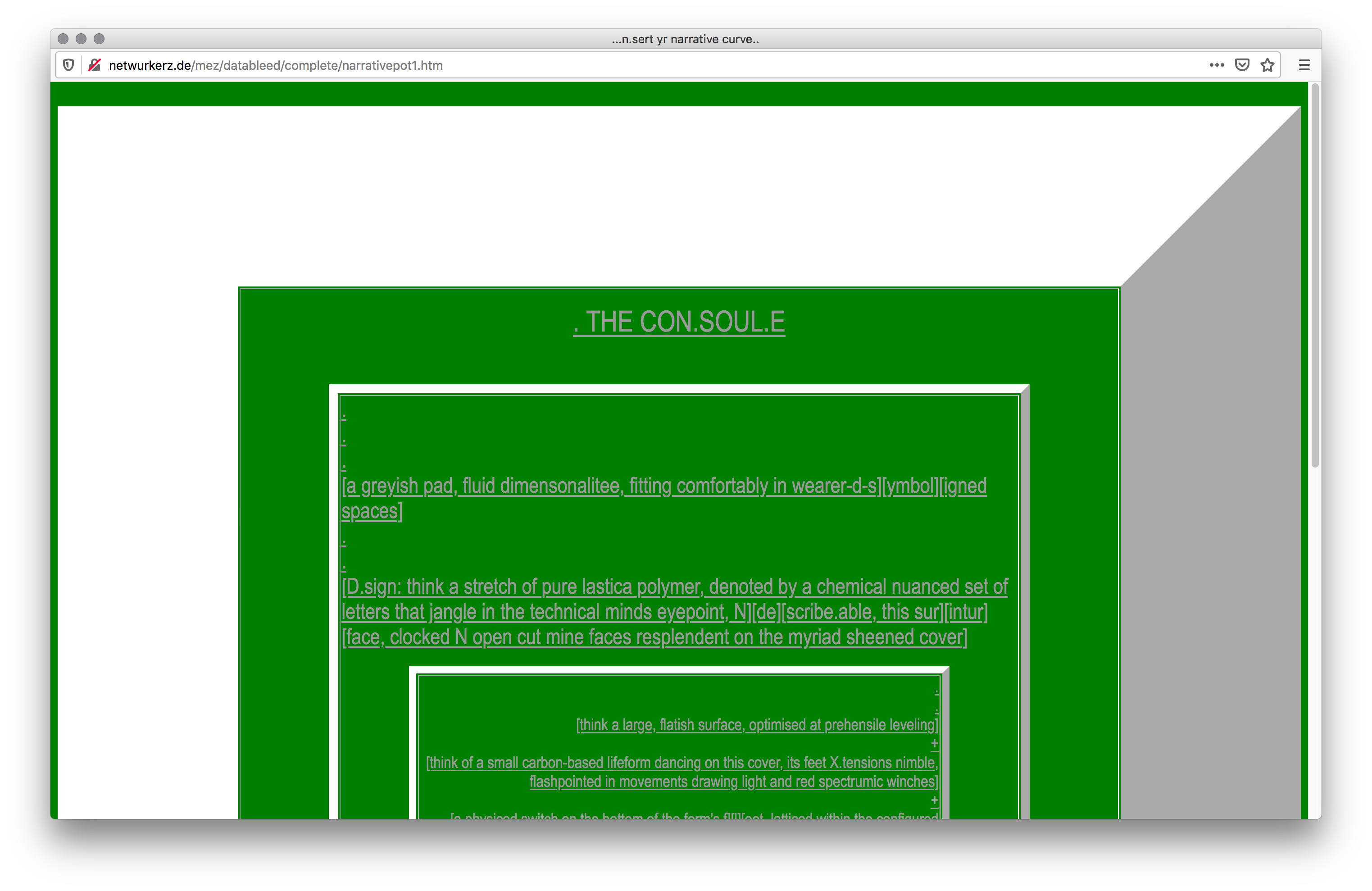
Screenshot, 2020, Firefox v76.0.1 on Mac OS 10.13.3; netwurkerz.de/mez/datableed/complete/narrativepot1.htm
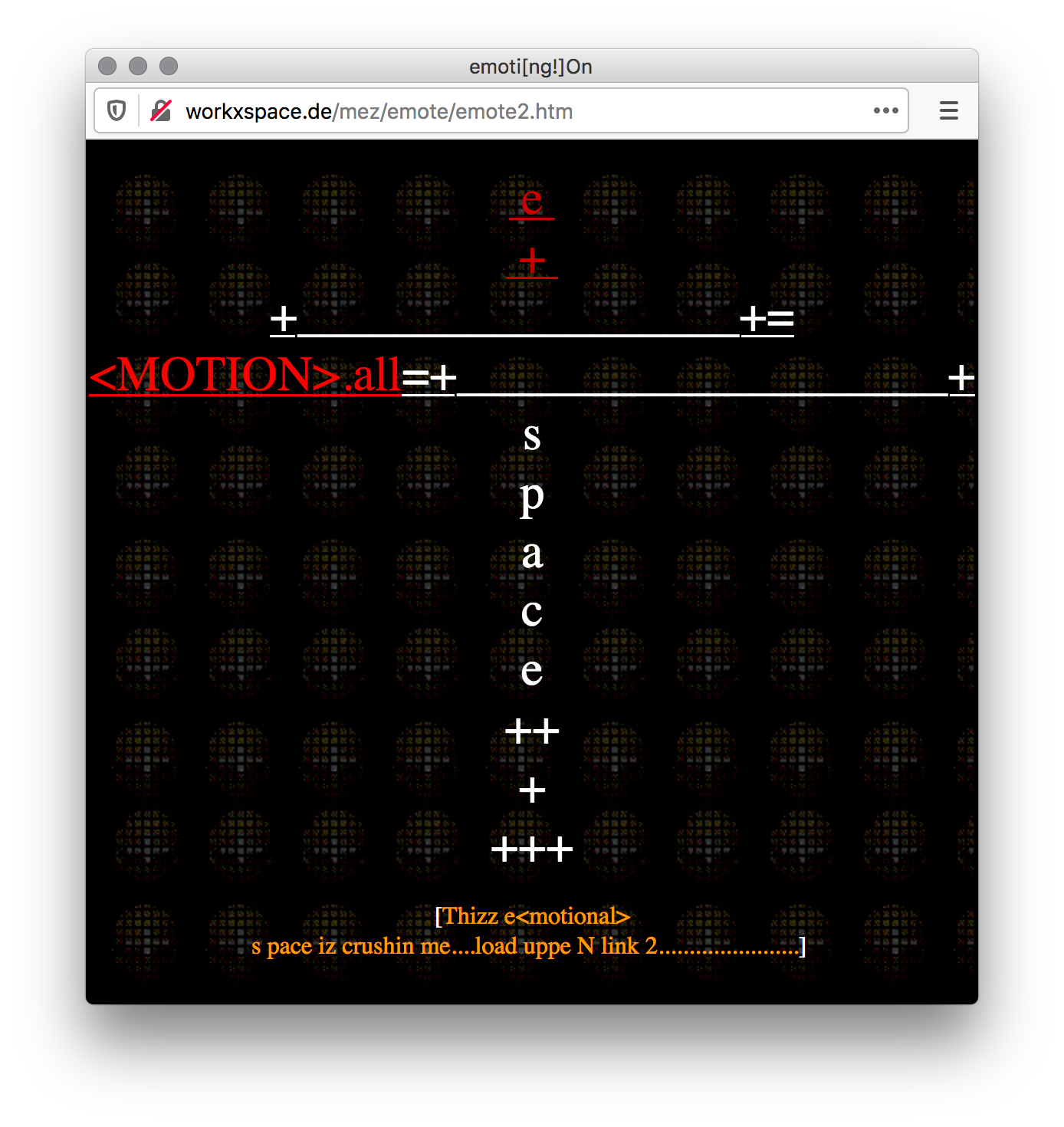
Screenshot, 2020, Firefox v76.0.1 on Mac OS 10.13.3; workxspace.de/mez/emote/emote2.htm
.be [ah!ware] that the texts make use of the polysemic language/code system termed mezangelle, which evolved/s from multifarious email exchanges, computer code re:appropriation and net iconographs. to mezangelle means to take words/wordstrings/sentences and alter them in such a way as to extend and enhance meaning beyond the predicted or the expected. it's similar to making “plain” text hypertextual via the arrangement and dissection of words & n.sertion of symbolic and actual code manipulation. the use of fragments like programming language-shards & operating system echos... all act 2 illustrate the x.pansion of software potentialities of [code discourse] in an environment x.clusively reliant on it. mezangelling attempts to expand traditional text parameters through layered/alternative meanings embedded in languages and the codes that create them, with notions of language play, software n.vocations and identity swapping being the key to comprehension; various fiction avatars have been used in the construction of these texts, & they shift through many incarnations such as data[h!]bleeder, ms post modemism, mezflesque.exe, ova.kill, net.w][ho][urker, Purrsonal Areah Netwurker, etc.
2001, Mez Breeze, http://netwurkerz.de/mez/datableed/complete/
Editor’s Note: Some of the inline text styling was removed for this excerpt, due to the markdown used to make the Cyberfeminism Index.
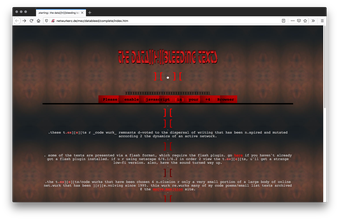
Screenshot, 2020, Firefox v76.0.1 on Mac OS 10.13.3; http://netwurkerz.de/mez/datableed/complete/index.htm

Screenshot, 2020, Firefox v76.0.1 on Mac OS 10.13.3; http://netwurkerz.de/mez/datableed/complete/index2.htm
![Screenshot of grey webpage with only an input form asking the user to share their childhood or secret][ed][ name and a "Cancel" or "OK" button below.](/media/images/mez-3.height-220.png)
Screenshot, 2020, Firefox v76.0.1 on Mac OS 10.13.3; netwurkerz.de/mez/datableed/complete/datahb1.htm
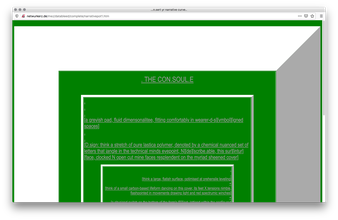
Screenshot, 2020, Firefox v76.0.1 on Mac OS 10.13.3; netwurkerz.de/mez/datableed/complete/narrativepot1.htm
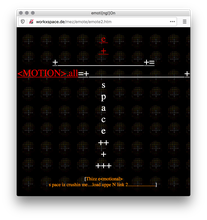
Screenshot, 2020, Firefox v76.0.1 on Mac OS 10.13.3; workxspace.de/mez/emote/emote2.htm
(211)
2001
The Politics of “Cyberfeminism” in the Middle East: The Case of Kurdish Women
Shahrzad Mojab
I deal with the ways in which real space imperatives constrain cyberspace initiatives. The Network is composed of both activists and researchers. However, the majority of activists are Kurdish women while the researchers are either from the West or belong to one of the dominant nations (Turks, Persians and Arabs). […] [In] between meetings, little communication takes place between the researchers living in the West and activists in the region. While the volume of the e-mail exchange is, at times, substantial among the researchers, they do not get transferred to activists. […] Two important factors contribute to this exclusion: one is language and the other is women’s access to the internet outside of the Western world. […]
While no state can politically deter us from engaging in such activities, economic imperatives act as powerful deterrents. Very simply, […] these projects do not feed us, and do not pay our rent and bills. We need either adequate financial resources or a strong and popular feminist movement.
2001, Shahrzad Mojab, in “Race, Gender & Class in Media,” ed. Cecilia Baldwin, special issue, Race, Gender & Class 8, no. 4 (2001): pp. 42–61; excerpt p. 52
https://www.jstor.org/stable/41674994 https://www.are.na/block/7977541
I deal with the ways in which real space imperatives constrain cyberspace initiatives. The Network is composed of both activists and researchers. However, the majority of activists are Kurdish women while the researchers are either from the West or belong to one of the dominant nations (Turks, Persians and Arabs). […] [In] between meetings, little communication takes place between the researchers living in the West and activists in the region. While the volume of the e-mail exchange is, at times, substantial among the researchers, they do not get transferred to activists. […] Two important factors contribute to this exclusion: one is language and the other is women’s access to the internet outside of the Western world. […]
While no state can politically deter us from engaging in such activities, economic imperatives act as powerful deterrents. Very simply, […] these projects do not feed us, and do not pay our rent and bills. We need either adequate financial resources or a strong and popular feminist movement.
2001, Shahrzad Mojab, in “Race, Gender & Class in Media,” ed. Cecilia Baldwin, special issue, Race, Gender & Class 8, no. 4 (2001): pp. 42–61; excerpt p. 52
https://www.jstor.org/stable/41674994 https://www.are.na/block/7977541
(212)
2001
Re: maria fernandez/suhail malik on cyberfeminism
Maria Fernandez, Suhail Malik
In an era when nearly everything, from small seeds to large computer networks, entails practical or metaphorical organic and machinic fusions, the “cyborg,” that product of early Cold War cybernetic theory, and detourned by [Donna] Haraway a generation later, has lost its political clout. Haraway’s cyborg, “not of woman born,” the illegitimate offspring of militarism and patriarchal capitalism, was modeled upon the meztisaje (racial mixing) of Mexican Americans. Acknowledging that she wrote the piece at a particular historical moment and primarily for women, Haraway’s cyborg was an inconstant figure able to incorporate spiral dancers, electronic factory workers, poets, and engineers; a figure who allied diverse oppositional strategies, from writing to biotechnology. Given this radical theoretical openness, what did the Cyborg Manifesto (CM) really manage to achieve?
2001, Pauline van Mourik Broekman, María Fernández, and Suhail Malik, [oldboys] mailing list, August 23, 2001, https://nettime.org/Lists-Archives/oldboys-0108/msg00019.html; excerpt from María Fernández
http://amsterdam.nettime.org/Lists-Archives/oldboys-0108/msg00019.html
In an era when nearly everything, from small seeds to large computer networks, entails practical or metaphorical organic and machinic fusions, the “cyborg,” that product of early Cold War cybernetic theory, and detourned by [Donna] Haraway a generation later, has lost its political clout. Haraway’s cyborg, “not of woman born,” the illegitimate offspring of militarism and patriarchal capitalism, was modeled upon the meztisaje (racial mixing) of Mexican Americans. Acknowledging that she wrote the piece at a particular historical moment and primarily for women, Haraway’s cyborg was an inconstant figure able to incorporate spiral dancers, electronic factory workers, poets, and engineers; a figure who allied diverse oppositional strategies, from writing to biotechnology. Given this radical theoretical openness, what did the Cyborg Manifesto (CM) really manage to achieve?
2001, Pauline van Mourik Broekman, María Fernández, and Suhail Malik, [oldboys] mailing list, August 23, 2001, https://nettime.org/Lists-Archives/oldboys-0108/msg00019.html; excerpt from María Fernández
http://amsterdam.nettime.org/Lists-Archives/oldboys-0108/msg00019.html
(213)
2001
Influencing Machine of Miss Natalija A.
Zoe Beloff
The patient does not know definitely how the machine is to be handled or how it is connected with her; but she vaguely thinks it is by means of telepathy. The outstanding fact about the machine is that it is being manipulated by someone in a certain manner, and everything that occurs to it happens also to her. When someone strikes the machine, she feels the blow in a corresponding part of her body.
2001, Zoe Beloff, http://www.zoebeloff.com/influencing

Screenshot, 2020, Firefox v76.0.1 on Mac OS 10.13.3; www.zoebeloff.com/influencing/influencing.html
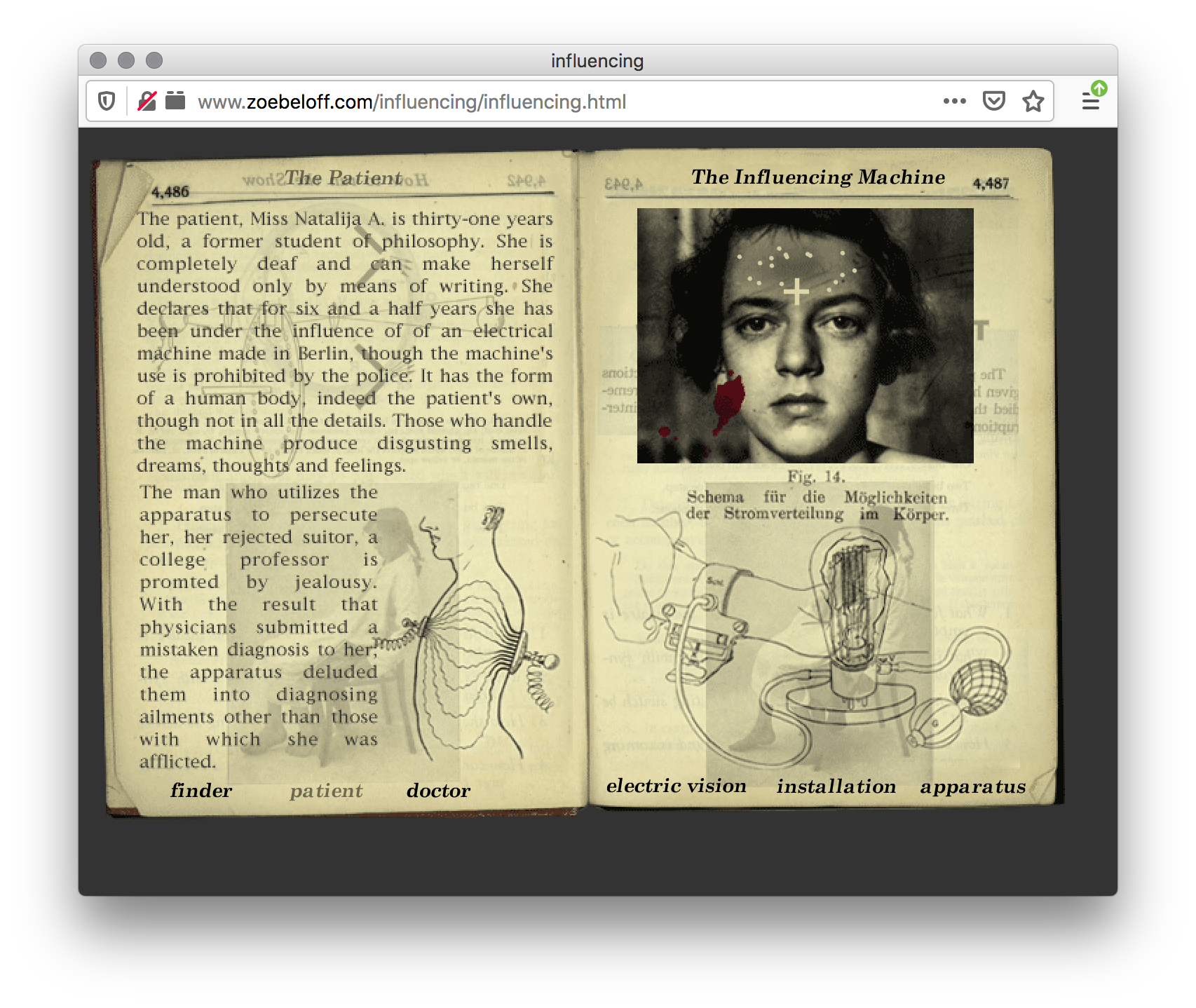
“patient”, Screenshot, 2020, Firefox v76.0.1 on Mac OS 10.13.3; www.zoebeloff.com/influencing/influencing.html
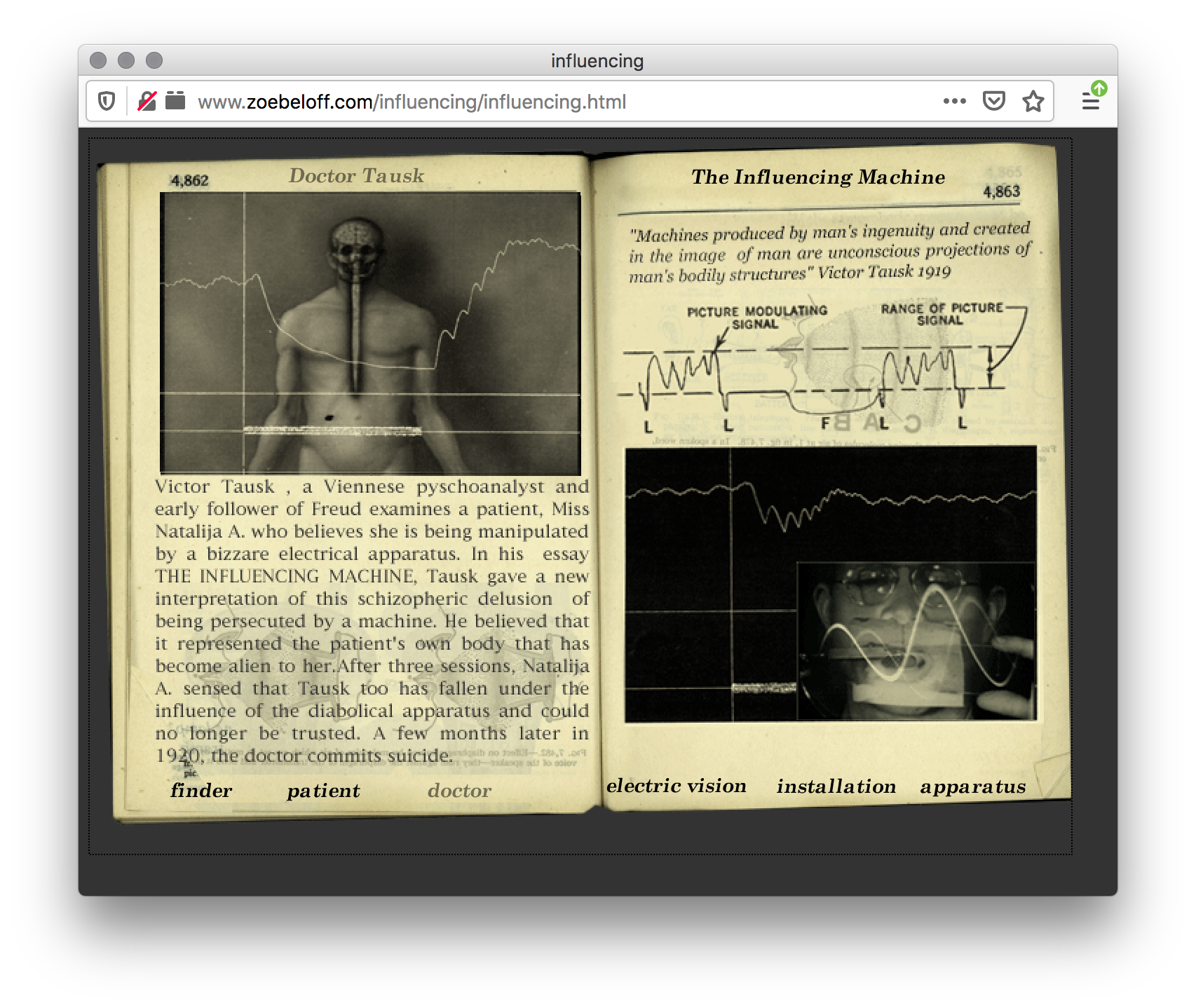
“doctor”, Screenshot, 2020, Firefox v76.0.1 on Mac OS 10.13.3; www.zoebeloff.com/influencing/influencing.html3
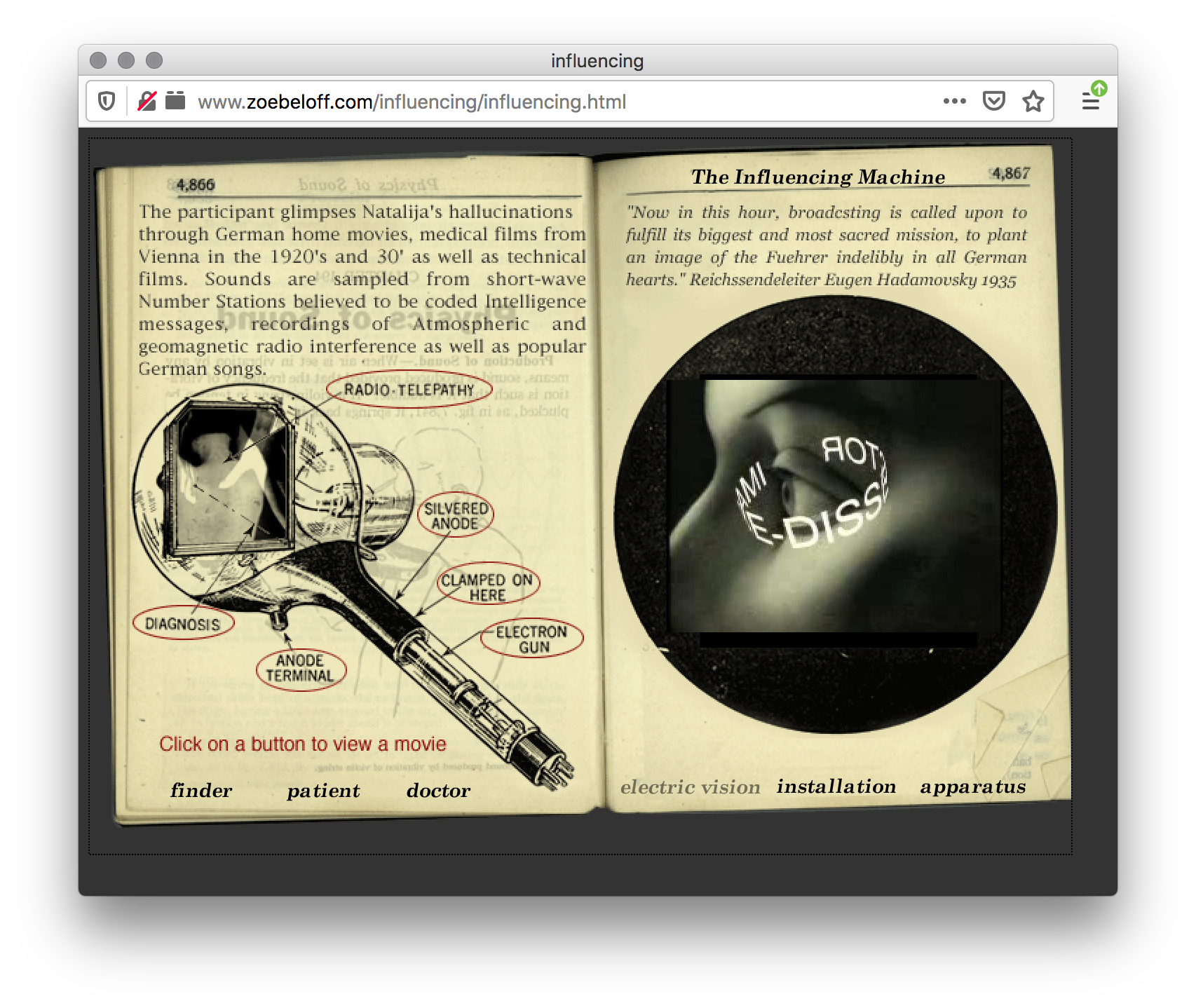
“electric vision: electron gun”, Screenshot, 2020, Firefox v76.0.1 on Mac OS 10.13.3; www.zoebeloff.com/influencing/influencing.html3
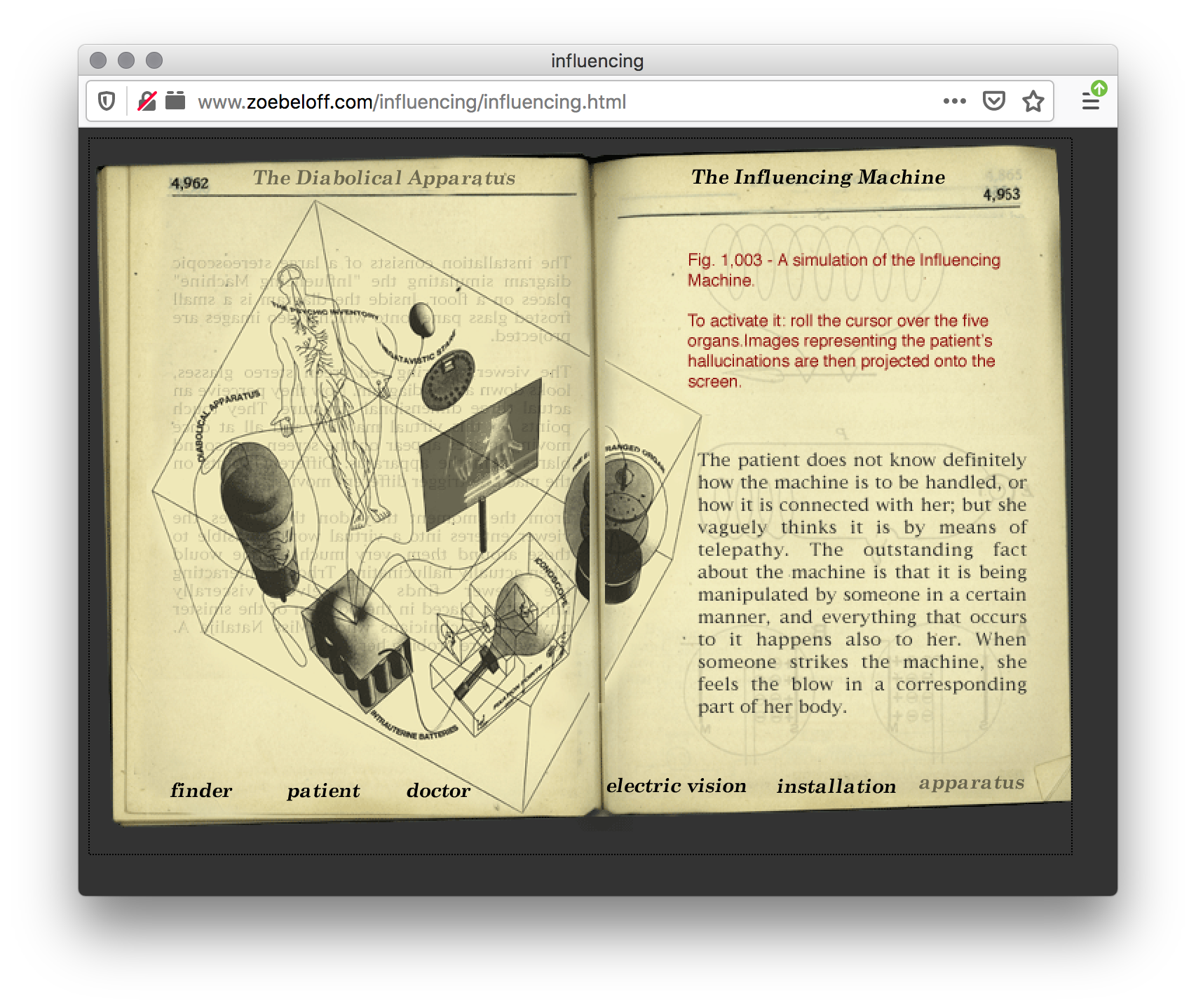
“installation”, Screenshot, 2020, Firefox v76.0.1 on Mac OS 10.13.3; www.zoebeloff.com/influencing/influencing.html3
The patient does not know definitely how the machine is to be handled or how it is connected with her; but she vaguely thinks it is by means of telepathy. The outstanding fact about the machine is that it is being manipulated by someone in a certain manner, and everything that occurs to it happens also to her. When someone strikes the machine, she feels the blow in a corresponding part of her body.
2001, Zoe Beloff, http://www.zoebeloff.com/influencing

Screenshot, 2020, Firefox v76.0.1 on Mac OS 10.13.3; www.zoebeloff.com/influencing/influencing.html
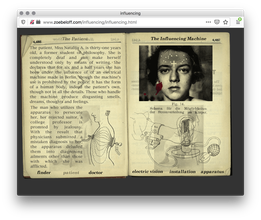
“patient”, Screenshot, 2020, Firefox v76.0.1 on Mac OS 10.13.3; www.zoebeloff.com/influencing/influencing.html
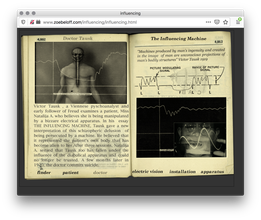
“doctor”, Screenshot, 2020, Firefox v76.0.1 on Mac OS 10.13.3; www.zoebeloff.com/influencing/influencing.html3
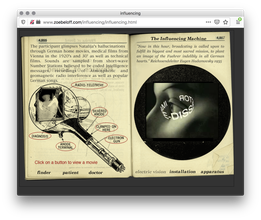
“electric vision: electron gun”, Screenshot, 2020, Firefox v76.0.1 on Mac OS 10.13.3; www.zoebeloff.com/influencing/influencing.html3
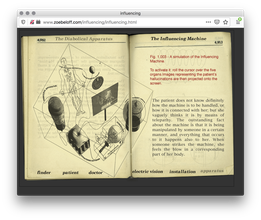
“installation”, Screenshot, 2020, Firefox v76.0.1 on Mac OS 10.13.3; www.zoebeloff.com/influencing/influencing.html3
(214)
2001–
2004
Cyberfeminist House
Karen Keifer-Boyd
The Cyberfeminist House revisits issues raised by Womanhouse, a 1971 collaborative installation and performance work by Judy Chicago and Miriam Shapiro … The popularity and pervasiveness of violent computer games has motivated me to develop Cyberfeminist House as an alternative Web-based “game,” of sorts, for both males and females to critique visual culture with a focus on power and privilege, and to promote values of cooperation and equal power relations. Web-based computer games do not yet exist to critique the visual media’s impact on social interactions and self-identity, although some contemporary artists through their electronic art guide viewers to question norms and value difference.
2001, Karen Keifer-Boyd, https://web.archive.org/web/20040617073601/http://explorations.sva.psu.edu/~cyberfem/cyberhouse/entrance.html
Editor’s Note: Womanhouse was a house in Los Angeles that was transformed into an art installation and performance space using feminist, consciousness-raising techniques by Judy Chicago, Miriam Schapiro, their students from California Institute of the Arts (CalArts) Feminist Art Program, and local women artists, including Faith Wilding. The exhibition catalogue was designed by Sheila Levrant de Bretteville. —MS
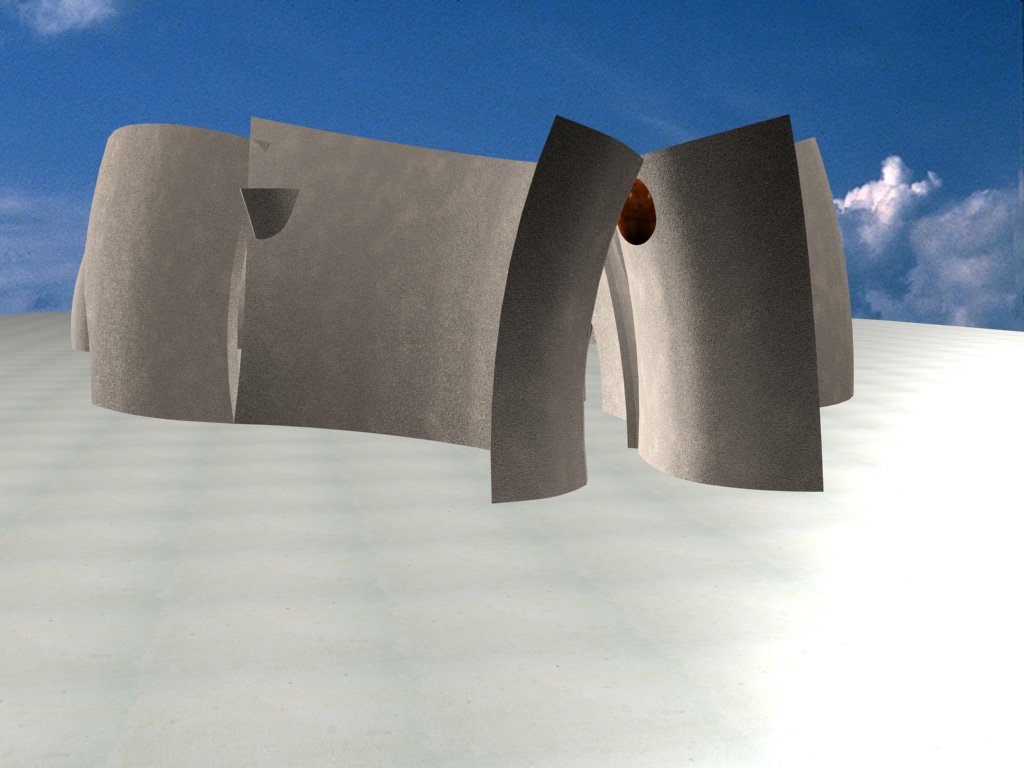
artifact from https://web.archive.org/web/20040617073601/http://explorations.sva.psu.edu/~cyberfem/cyberhouse/entrance.html
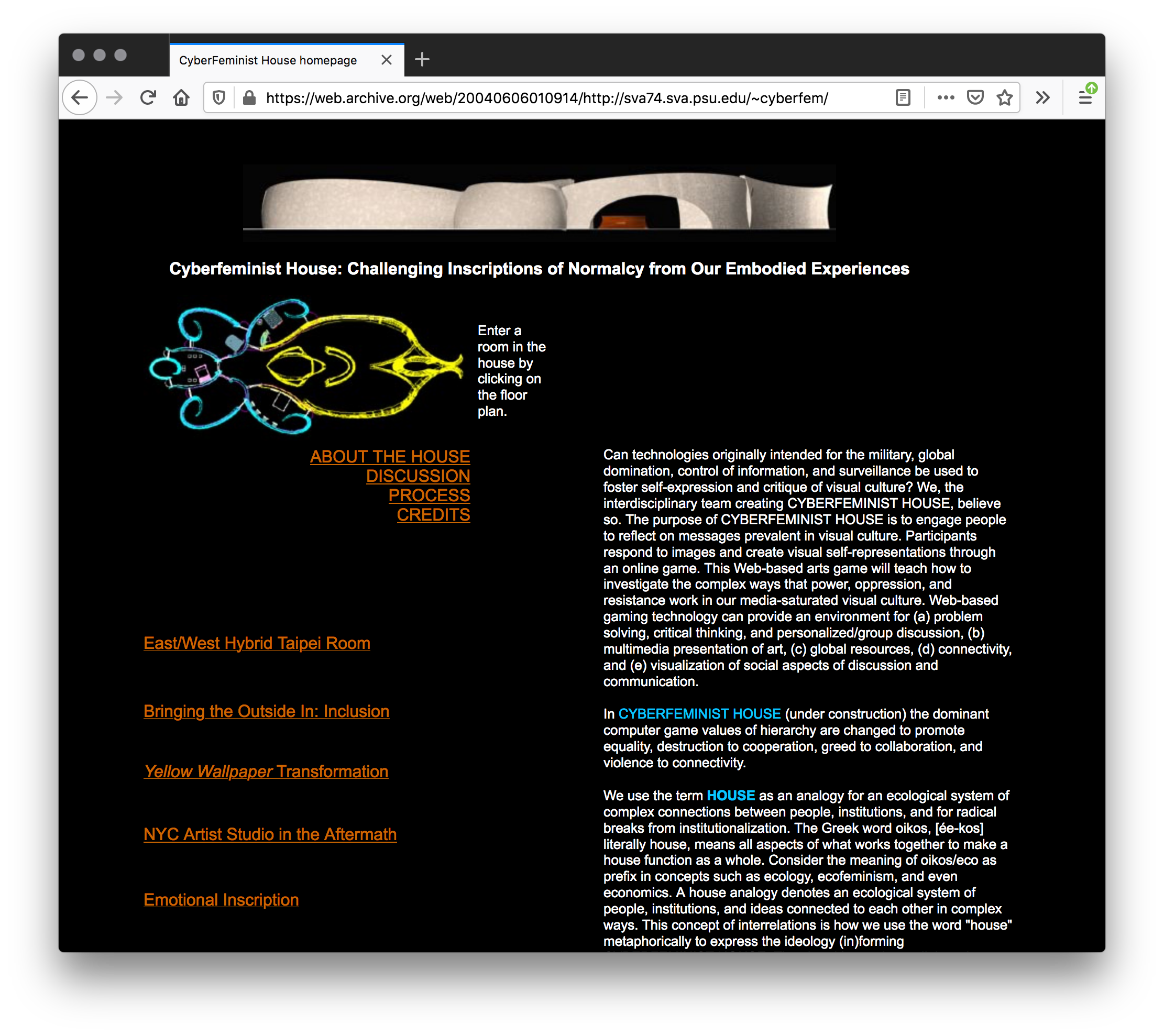
Wayback Machine, June 6, 2004, Screenshot, 2020, Firefox v76.0.1 on Mac OS 10.13.3; https://web.archive.org/web/20040606010914/http://sva74.sva.psu.edu/~cyberfem/
The Cyberfeminist House revisits issues raised by Womanhouse, a 1971 collaborative installation and performance work by Judy Chicago and Miriam Shapiro … The popularity and pervasiveness of violent computer games has motivated me to develop Cyberfeminist House as an alternative Web-based “game,” of sorts, for both males and females to critique visual culture with a focus on power and privilege, and to promote values of cooperation and equal power relations. Web-based computer games do not yet exist to critique the visual media’s impact on social interactions and self-identity, although some contemporary artists through their electronic art guide viewers to question norms and value difference.
2001, Karen Keifer-Boyd, https://web.archive.org/web/20040617073601/http://explorations.sva.psu.edu/~cyberfem/cyberhouse/entrance.html
Editor’s Note: Womanhouse was a house in Los Angeles that was transformed into an art installation and performance space using feminist, consciousness-raising techniques by Judy Chicago, Miriam Schapiro, their students from California Institute of the Arts (CalArts) Feminist Art Program, and local women artists, including Faith Wilding. The exhibition catalogue was designed by Sheila Levrant de Bretteville. —MS
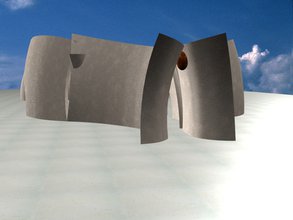
artifact from https://web.archive.org/web/20040617073601/http://explorations.sva.psu.edu/~cyberfem/cyberhouse/entrance.html
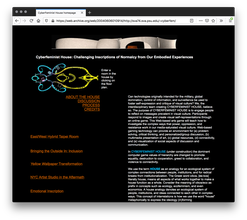
Wayback Machine, June 6, 2004, Screenshot, 2020, Firefox v76.0.1 on Mac OS 10.13.3; https://web.archive.org/web/20040606010914/http://sva74.sva.psu.edu/~cyberfem/
(215)
2001
Blackness for Sale
Mendi + Keith Obadike
This heirloom has been in the possession of the seller for twenty-eight years. Mr. Obadike’s Blackness has been used primarily in the United States and its functionality outside of the US cannot be guaranteed. Buyer will receive a certificate of authenticity. Benefits and Warnings Benefits: 1. This Blackness may be used for creating black art. 2. This Blackness may be used for writing critical essays or scholarship about other blacks. 3. This Blackness may be used for making jokes about black people and/or laughing at black humor comfortably. (Option#3 may overlap with option#2) 4. This Blackness may be used for accessing some affirmative action benefits. (Limited time offer. May already be prohibited in some areas.) 5. This Blackness may be used for dating a black person without fear of public scrutiny. 6. This Blackness may be used for gaining access to exclusive, “high risk” neighborhoods. […] 8. This Blackness may be used for instilling fear. […] Warnings: 1. The Seller does not recommend that this Blackness be used during legal proceedings of any sort. 2. The Seller does not recommend that this Blackness be used while seeking employment. 3. The Seller does not recommend that this Blackness be used in the process of making or selling “serious” art. 4. The Seller does not recommend that this Blackness be used while shopping or writing a personal check. 5. The Seller does not recommend that this Blackness be used while making intellectual claims. […] 7. The Seller does not recommend that this Blackness be used while demanding fairness. 8. The Seller does not recommend that this Blackness be used while demanding. […]
2001, Mendi + Keith Obadike, https://obadike.tripod.com/ebay.html; referred by Salome Asega
https://obadike.squarespace.com/#/blackness/
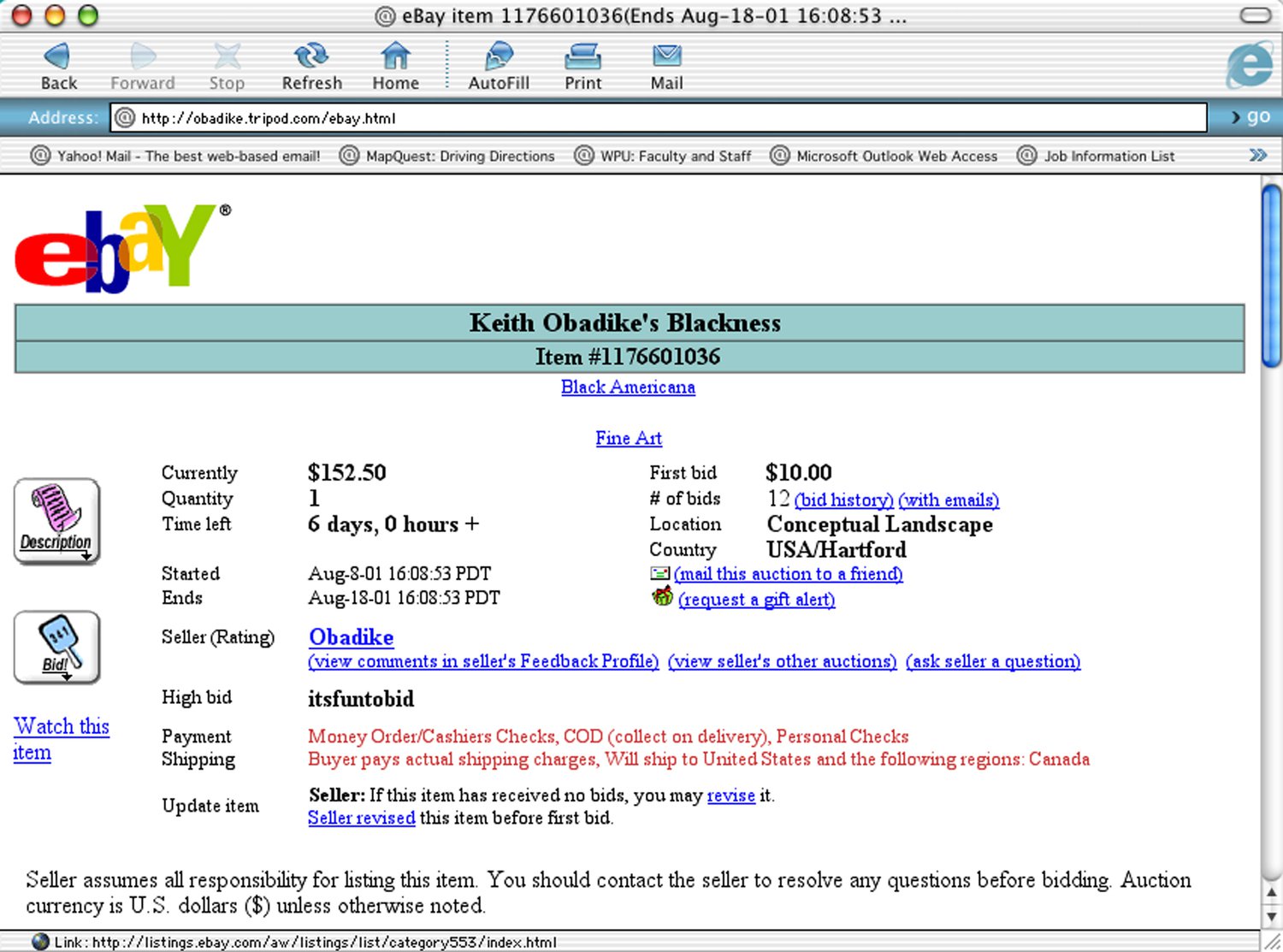
Image from https://obadike.squarespace.com/#/blackness/
This heirloom has been in the possession of the seller for twenty-eight years. Mr. Obadike’s Blackness has been used primarily in the United States and its functionality outside of the US cannot be guaranteed. Buyer will receive a certificate of authenticity. Benefits and Warnings Benefits: 1. This Blackness may be used for creating black art. 2. This Blackness may be used for writing critical essays or scholarship about other blacks. 3. This Blackness may be used for making jokes about black people and/or laughing at black humor comfortably. (Option#3 may overlap with option#2) 4. This Blackness may be used for accessing some affirmative action benefits. (Limited time offer. May already be prohibited in some areas.) 5. This Blackness may be used for dating a black person without fear of public scrutiny. 6. This Blackness may be used for gaining access to exclusive, “high risk” neighborhoods. […] 8. This Blackness may be used for instilling fear. […] Warnings: 1. The Seller does not recommend that this Blackness be used during legal proceedings of any sort. 2. The Seller does not recommend that this Blackness be used while seeking employment. 3. The Seller does not recommend that this Blackness be used in the process of making or selling “serious” art. 4. The Seller does not recommend that this Blackness be used while shopping or writing a personal check. 5. The Seller does not recommend that this Blackness be used while making intellectual claims. […] 7. The Seller does not recommend that this Blackness be used while demanding fairness. 8. The Seller does not recommend that this Blackness be used while demanding. […]
2001, Mendi + Keith Obadike, https://obadike.tripod.com/ebay.html; referred by Salome Asega
https://obadike.squarespace.com/#/blackness/

Image from https://obadike.squarespace.com/#/blackness/
(216)
2001
All Too Real: The Tale of an On-Line Black Sale: Coco Fusco Interviews Keith Townsend Obadike
Coco Fusco, Keith Obadike
Coco Fusco: There is a tendency among white artists who consider themselves transgressive to claim the virtual as a space in which their symbolic appropriation of non-white identity and history is an empowering rebellious even avant garde gesture. […] What is your take on such cross-racial net.performative gestures?
Keith Townsend Obadike: I don’t know if this is so much about the fluidity of identity online or just about how some white artists define avant garde art. Surely the net space just makes the same old burnt cork blackface routine easier. This is sort of a white performance tradition. […] To many white artists, blackness represents some kind of borderless excess, some kind of unchecked expression. Like the commonly confused notion that with African drumming (or substitute jazz) you just play whatever you feel rather than develop structured content. I would argue that this same kind of romantic freedom is also associated with the net so that blackness and this kind of digital frontier become conflated.
2001, Keith Townsend Obadike, interview by Coco Fusco, September 24, 2001, http://www.blacknetart.com/coco.htm
Coco Fusco: There is a tendency among white artists who consider themselves transgressive to claim the virtual as a space in which their symbolic appropriation of non-white identity and history is an empowering rebellious even avant garde gesture. […] What is your take on such cross-racial net.performative gestures?
Keith Townsend Obadike: I don’t know if this is so much about the fluidity of identity online or just about how some white artists define avant garde art. Surely the net space just makes the same old burnt cork blackface routine easier. This is sort of a white performance tradition. […] To many white artists, blackness represents some kind of borderless excess, some kind of unchecked expression. Like the commonly confused notion that with African drumming (or substitute jazz) you just play whatever you feel rather than develop structured content. I would argue that this same kind of romantic freedom is also associated with the net so that blackness and this kind of digital frontier become conflated.
2001, Keith Townsend Obadike, interview by Coco Fusco, September 24, 2001, http://www.blacknetart.com/coco.htm
(217)
2001
At Your Service
Coco Fusco
Once upon a time when black intellectuals used to elaborate their arguments against racism and colonialism, they would be compelled to explain that they did come from places that existed, that they did have a culture, or that they were in fact human. I think of them as I reflect on the suggestion that in the age of digital technology “we” don’t need to be concerned with the violent exercise of power on bodies and territories anymore because “we” don’t have to carry all that meat and dirt along to the virtual promised land. I think of them because I have been visiting places where the hardware of the digital revolution is assembled, and the people are not a part of this culture, and the conditions that they work and live in form the underside of the post-human. If we are to comprehend how identity and subjectivity are being reshaped in the digital age, we must look at the relationship between the desire to enable minds to fantasmatically disengage from bodies and the actuality of technologies that objectify bodies and bodily activity, thus disengaging them from minds. Digital disembodiment's fiction of transcendence relies on the expulsion of the abject inter-relations between bodies and technologies from the virtual imaginary.
2001, Coco Fusco, http://www.blacknetart.com/Fusco.html, excerpted from Coco Fusco, “At Your Service: Latinas in the Global Information Network," in The Bodies That Were Not Ours and Other Writings (London: Routledge, 2001), n.p.
http://www.blacknetart.com/Fusco.html
Once upon a time when black intellectuals used to elaborate their arguments against racism and colonialism, they would be compelled to explain that they did come from places that existed, that they did have a culture, or that they were in fact human. I think of them as I reflect on the suggestion that in the age of digital technology “we” don’t need to be concerned with the violent exercise of power on bodies and territories anymore because “we” don’t have to carry all that meat and dirt along to the virtual promised land. I think of them because I have been visiting places where the hardware of the digital revolution is assembled, and the people are not a part of this culture, and the conditions that they work and live in form the underside of the post-human. If we are to comprehend how identity and subjectivity are being reshaped in the digital age, we must look at the relationship between the desire to enable minds to fantasmatically disengage from bodies and the actuality of technologies that objectify bodies and bodily activity, thus disengaging them from minds. Digital disembodiment's fiction of transcendence relies on the expulsion of the abject inter-relations between bodies and technologies from the virtual imaginary.
2001, Coco Fusco, http://www.blacknetart.com/Fusco.html, excerpted from Coco Fusco, “At Your Service: Latinas in the Global Information Network," in The Bodies That Were Not Ours and Other Writings (London: Routledge, 2001), n.p.
http://www.blacknetart.com/Fusco.html
(218)
2001
Imagining Indians in the 25th Century
Skawennati
It seems like there isn’t much happening in 2000, except, I guess, that it is the start of a new millennium. Of course, that depends on which calendar you’re consulting. Nobody remembers when Indian history started. That’s what ‘time immemorial’ means.
Let’s see, I guess it would be a good idea to describe myself first. My mom is Mohawk and my dad a first generation Italian immigrant. For those who like to measure blood quantum, that makes me 100% Mohawk and 100% Italian. I have lived in urban centres all my life … the closest thing I’ve come to a reserve is the Native Friendship Centre. I don’t speak Mohawk although I know a bunch of words. I don’t go to church, but I don’t go to the Longhouse either. I work as a web designer.
As for Native affairs, things feel like they’re moving at a snail’s pace … A new millenium. What will happen to Native people? Will we finally die out or be totally assimilated, like a lot of people once wished we would? Or will we once again rule our lands?”
2001, Skawennati, https://web.archive.org/web/20201204180824/http://skawennati.com/ImaginingIndians/; excerpt from Skawennati, “2000, Katsitsahawi,” Imagining Indians in the 25th Century, http://skawennati.com/ImaginingIndians/2000-journal.htm

homepage image from http://skawennati.com/ImaginingIndians/

Screenshot, 2020, Firefox v76.0.1 on Mac OS 10.13.3; http://skawennati.com/ImaginingIndians/home2.htm
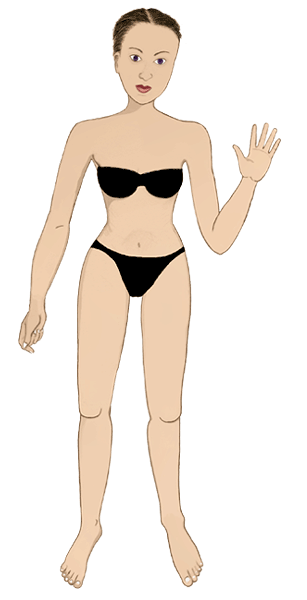
artifact from http://skawennati.com/ImaginingIndians/home2.htm
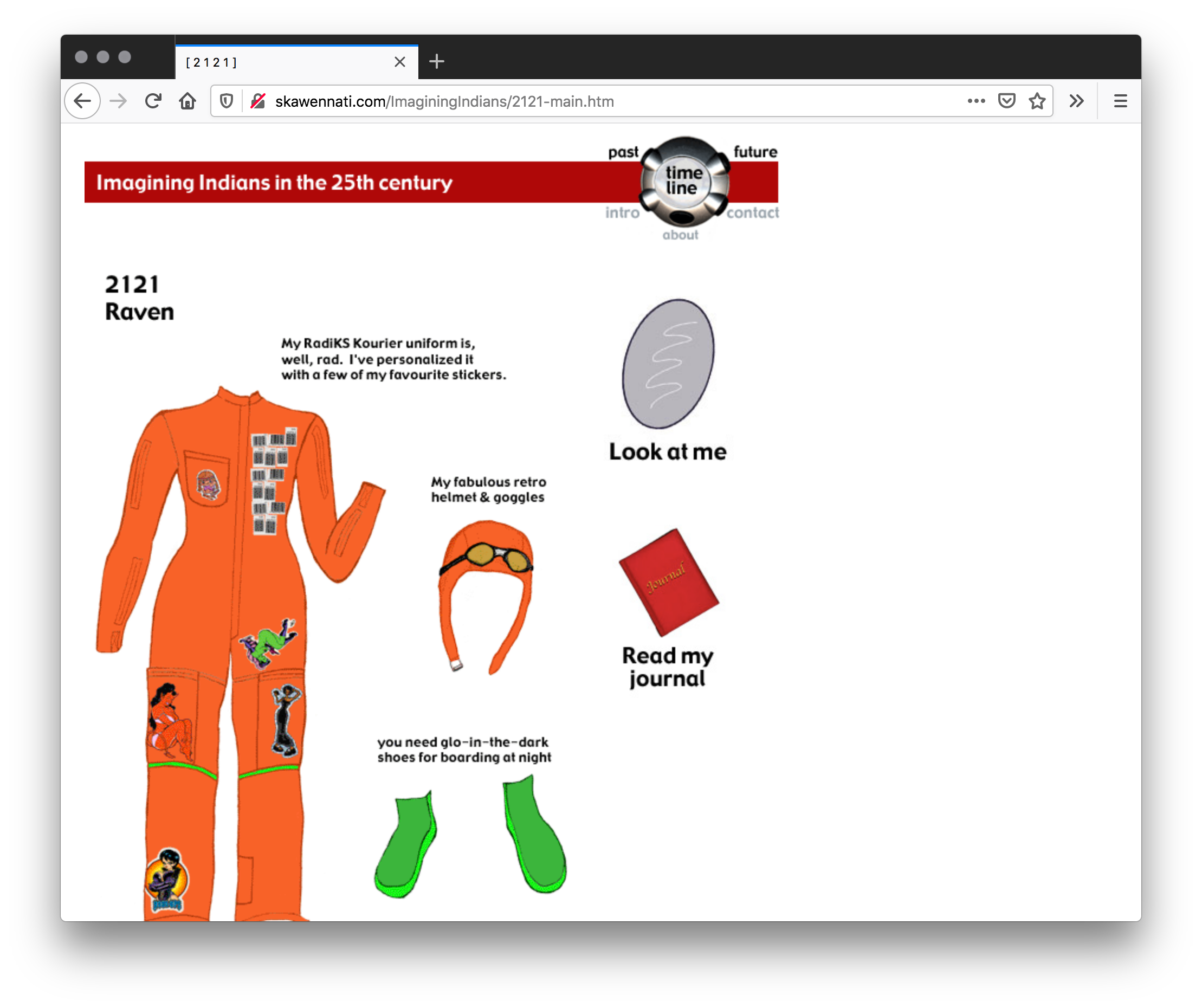
Screenshot, 2020, Firefox v76.0.1 on Mac OS 10.13.3; http://skawennati.com/ImaginingIndians/2121-main.htm
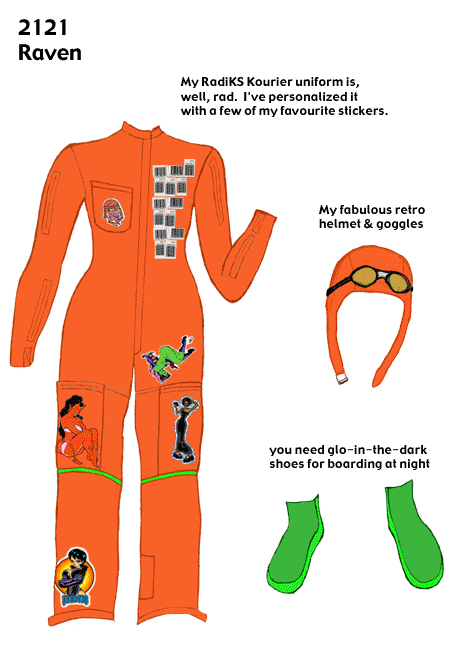
artifact from http://skawennati.com/ImaginingIndians/2121-main.htm
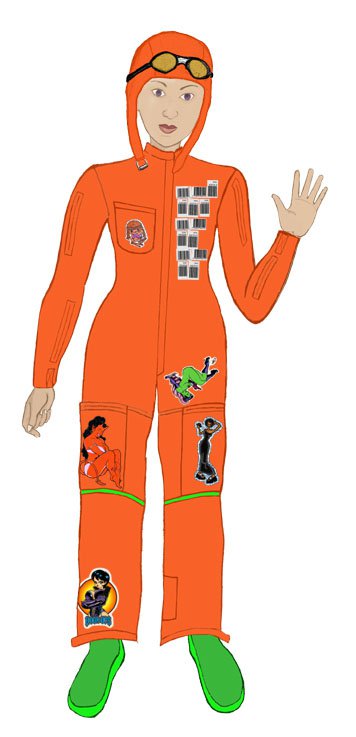
artifact from http://skawennati.com/ImaginingIndians/2121-mirror.htm
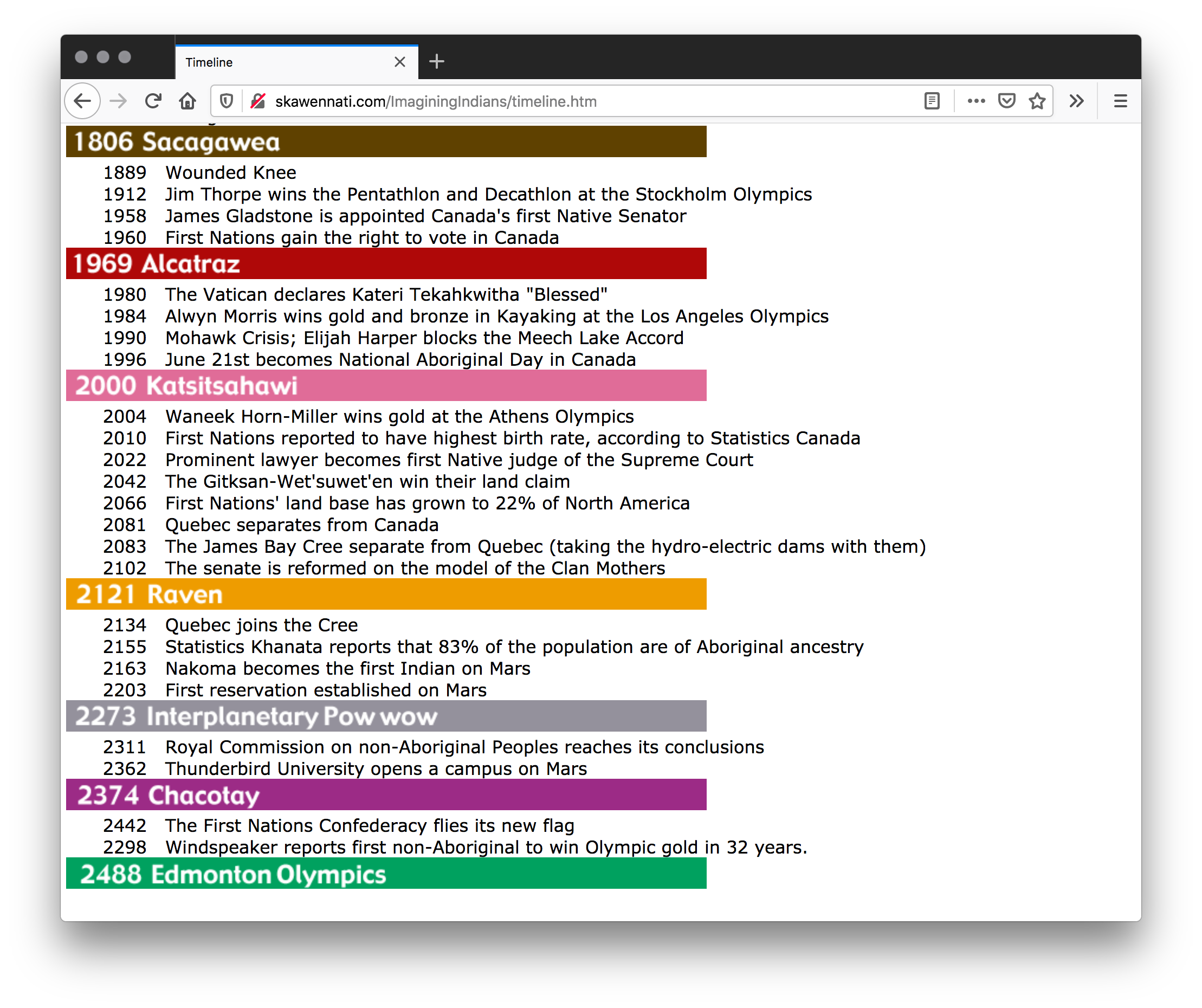
Screenshot, 2020, Firefox v76.0.1 on Mac OS 10.13.3; http://skawennati.com/ImaginingIndians/timeline.htm
It seems like there isn’t much happening in 2000, except, I guess, that it is the start of a new millennium. Of course, that depends on which calendar you’re consulting. Nobody remembers when Indian history started. That’s what ‘time immemorial’ means.
Let’s see, I guess it would be a good idea to describe myself first. My mom is Mohawk and my dad a first generation Italian immigrant. For those who like to measure blood quantum, that makes me 100% Mohawk and 100% Italian. I have lived in urban centres all my life … the closest thing I’ve come to a reserve is the Native Friendship Centre. I don’t speak Mohawk although I know a bunch of words. I don’t go to church, but I don’t go to the Longhouse either. I work as a web designer.
As for Native affairs, things feel like they’re moving at a snail’s pace … A new millenium. What will happen to Native people? Will we finally die out or be totally assimilated, like a lot of people once wished we would? Or will we once again rule our lands?”
2001, Skawennati, https://web.archive.org/web/20201204180824/http://skawennati.com/ImaginingIndians/; excerpt from Skawennati, “2000, Katsitsahawi,” Imagining Indians in the 25th Century, http://skawennati.com/ImaginingIndians/2000-journal.htm

homepage image from http://skawennati.com/ImaginingIndians/
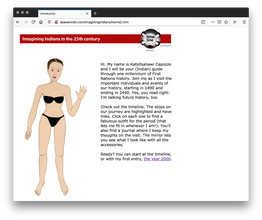
Screenshot, 2020, Firefox v76.0.1 on Mac OS 10.13.3; http://skawennati.com/ImaginingIndians/home2.htm

artifact from http://skawennati.com/ImaginingIndians/home2.htm
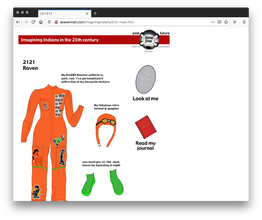
Screenshot, 2020, Firefox v76.0.1 on Mac OS 10.13.3; http://skawennati.com/ImaginingIndians/2121-main.htm
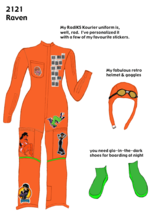
artifact from http://skawennati.com/ImaginingIndians/2121-main.htm
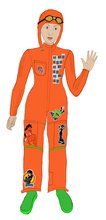
artifact from http://skawennati.com/ImaginingIndians/2121-mirror.htm
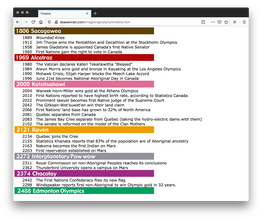
Screenshot, 2020, Firefox v76.0.1 on Mac OS 10.13.3; http://skawennati.com/ImaginingIndians/timeline.htm
(219)
2001
Horse
Archer Pechawis
“Horse is an historical re-imagining of the West told with voice, drum, video and cello (Cris Derksen). Originally written and performed for the 2001 Longest Night Festival in Whitehorse, Horse has transformed from a spoken word piece with a video backdrop into a New Media performance. In 2007 with the development of a ‘digital drum‘, a hand drum with a ‘forward-engineered’ laptop inside, which played video.
This contraption suffered from two problems, the first being it’s tendency to crash when played hard (despite having the hard drive in an external case in my pocket), and the second having no way to time the video to the performance (in the performance clip as you will see the video end before the piece is finished).” —Archer Pechawis
http://apxo.net/performance/horse.html http://apxo.net/writing/talking-to-my-horse.html
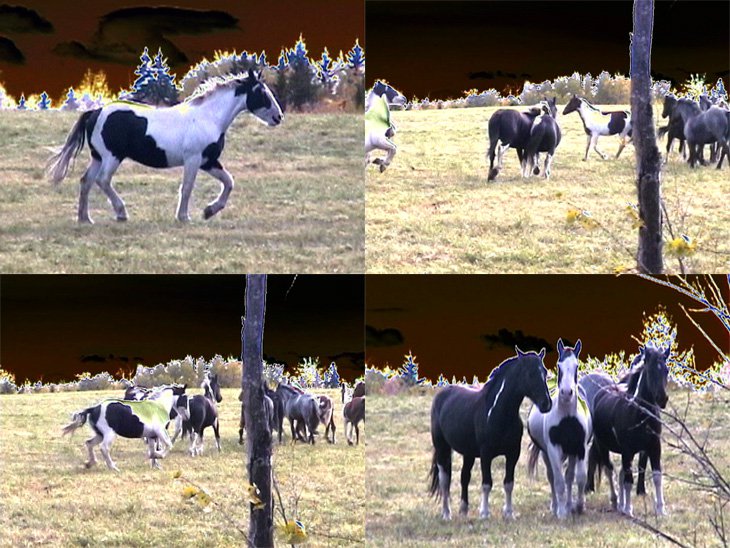
image from [http://apxo.net/performance/horse.html[(http://apxo.net/performance/horse.html)
“Horse is an historical re-imagining of the West told with voice, drum, video and cello (Cris Derksen). Originally written and performed for the 2001 Longest Night Festival in Whitehorse, Horse has transformed from a spoken word piece with a video backdrop into a New Media performance. In 2007 with the development of a ‘digital drum‘, a hand drum with a ‘forward-engineered’ laptop inside, which played video.
This contraption suffered from two problems, the first being it’s tendency to crash when played hard (despite having the hard drive in an external case in my pocket), and the second having no way to time the video to the performance (in the performance clip as you will see the video end before the piece is finished).” —Archer Pechawis
http://apxo.net/performance/horse.html http://apxo.net/writing/talking-to-my-horse.html
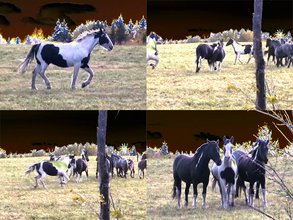
image from [http://apxo.net/performance/horse.html[(http://apxo.net/performance/horse.html)
(220)
2001
CREE ++
Cheryl L’Hirondelle
To tell Aboriginal stories in contemporary cultural forms, the work needs to remain embedded in its language of origin with all its richness, nuance and modality. Cree for e.g., a language spoken across the West, and used for trading amongst different banks has sixty words for love and sixty words for suffering. According to Aboriginal cultural practitioners, keeping language alive is fundamental to keeping culture alive. This provides a direct challenge for artists, writers, and others from Aboriginal communities who wish to use digital tools to express culture. […]
The CREE ++ project was conceived at the Skinning Our Tools Designing for Culture and Context summit at BNMI. It links Aboriginal artists, linguists, and computer scientists and designers from various cultures who are interested in rebuilding tools from the linguistic concepts of Aboriginal and other languages which remain alive today. After [Cheryl] L’Hirondelle, [Candice] Hopkins and I worked in Dakar this summer, the project expanded to include non-Canadian Aboriginal languages.
2001, Cheryl L’Hirondelle; excerpt from Sara Diamond, “Reframing the Cathedral: Opening the Sources of Technologies and Cultural Assumptions,” in Critical Digital Studies: A Reader, eds. Arthur Kroker and Marilouise Kroker (Toronto: University of Toronto Press, 2008), p. 60
http://www.mediaarthistory.org/refresh/Programmatic%20key%20texts/pdfs/Diamond.pdf
To tell Aboriginal stories in contemporary cultural forms, the work needs to remain embedded in its language of origin with all its richness, nuance and modality. Cree for e.g., a language spoken across the West, and used for trading amongst different banks has sixty words for love and sixty words for suffering. According to Aboriginal cultural practitioners, keeping language alive is fundamental to keeping culture alive. This provides a direct challenge for artists, writers, and others from Aboriginal communities who wish to use digital tools to express culture. […]
The CREE ++ project was conceived at the Skinning Our Tools Designing for Culture and Context summit at BNMI. It links Aboriginal artists, linguists, and computer scientists and designers from various cultures who are interested in rebuilding tools from the linguistic concepts of Aboriginal and other languages which remain alive today. After [Cheryl] L’Hirondelle, [Candice] Hopkins and I worked in Dakar this summer, the project expanded to include non-Canadian Aboriginal languages.
2001, Cheryl L’Hirondelle; excerpt from Sara Diamond, “Reframing the Cathedral: Opening the Sources of Technologies and Cultural Assumptions,” in Critical Digital Studies: A Reader, eds. Arthur Kroker and Marilouise Kroker (Toronto: University of Toronto Press, 2008), p. 60
http://www.mediaarthistory.org/refresh/Programmatic%20key%20texts/pdfs/Diamond.pdf
(221)
2001
What Happened to Difference in Cyberspace? The (Re)turn of the She-Cyborg
Jenny Sundén
When bodies are viewed as systems of writing, different techniques of inscription and encarving (social, juridical, medical, disciplinary, etc.) constitute bodies as culturally and historically specific. In her striving toward a corporeal feminism, [Elizabeth] Grosz is skeptical to the view of the body as a blank, passive surface, as a neutral page open to societal intextuation, since the specific modes of materiality of the “page” /body makes a difference to the meaning of the message that is being inscribed. […] Matter […] is something that might create a tension in relation to textual inscriptions. […]
In a similar manner, a she-cyborg could be very helpful in pointing out that online bodies are bodies that are certainly being written, but simultaneously bodies to write on. But as opposed to the flesh-and-bone materiality of the physical body, online bodies are rather grounded in computer code, why system developers and programmers have the power to set the limits for not only what you can do online, but ultimately for who you can be. […] Various computer programs serve as underlying structures in bodily practices on the Net.
2001, Jenny Sundén, Feminist Media Studies 1, no. 2 (2001): pp. 215–232; excerpt p. 228–229
When bodies are viewed as systems of writing, different techniques of inscription and encarving (social, juridical, medical, disciplinary, etc.) constitute bodies as culturally and historically specific. In her striving toward a corporeal feminism, [Elizabeth] Grosz is skeptical to the view of the body as a blank, passive surface, as a neutral page open to societal intextuation, since the specific modes of materiality of the “page” /body makes a difference to the meaning of the message that is being inscribed. […] Matter […] is something that might create a tension in relation to textual inscriptions. […]
In a similar manner, a she-cyborg could be very helpful in pointing out that online bodies are bodies that are certainly being written, but simultaneously bodies to write on. But as opposed to the flesh-and-bone materiality of the physical body, online bodies are rather grounded in computer code, why system developers and programmers have the power to set the limits for not only what you can do online, but ultimately for who you can be. […] Various computer programs serve as underlying structures in bodily practices on the Net.
2001, Jenny Sundén, Feminist Media Studies 1, no. 2 (2001): pp. 215–232; excerpt p. 228–229
(222)
2001
Virtual Bodies in Reality
Margaret Tan
Virtual Bodies in Reality involves the use of the male and female virtual bodies from the Visible Human Project, initiated in the US in 1986, where two corpses were systematically sliced, imaged, converted into computer data files, and reconstituted to form two virtual bodies for scientific research.
In this work, visitors are able to interact with the virtual bodies in certain predefined ways. Once the visitors have registered their name, age and sex, they would be able to use the mouse to select a spot on either one of the virtual bodies to “afflict” a bruise or “heal” a wound. In the fast-pace “immaterial” realm of cyberspace, there is often neither time nor space to reflect upon the impact of new technologies on power relations, and the ethical implications of our actions. This work highlights the changing concept of violence in technologically mediated spaces and attempts to suggest notions of responsibility (or lack of) through the registration of one’s particulars in the seemingly anonymous World Wide Web.
2001, Margaret Tan, Cyberarts and Cybercultures Research Initiative, National University of Singapore, http://margaret-tan.com/VBR.html; submitted by Irina Aristarkhova
submitted by Irina Aristarkhova
Virtual Bodies in Reality involves the use of the male and female virtual bodies from the Visible Human Project, initiated in the US in 1986, where two corpses were systematically sliced, imaged, converted into computer data files, and reconstituted to form two virtual bodies for scientific research.
In this work, visitors are able to interact with the virtual bodies in certain predefined ways. Once the visitors have registered their name, age and sex, they would be able to use the mouse to select a spot on either one of the virtual bodies to “afflict” a bruise or “heal” a wound. In the fast-pace “immaterial” realm of cyberspace, there is often neither time nor space to reflect upon the impact of new technologies on power relations, and the ethical implications of our actions. This work highlights the changing concept of violence in technologically mediated spaces and attempts to suggest notions of responsibility (or lack of) through the registration of one’s particulars in the seemingly anonymous World Wide Web.
2001, Margaret Tan, Cyberarts and Cybercultures Research Initiative, National University of Singapore, http://margaret-tan.com/VBR.html; submitted by Irina Aristarkhova
submitted by Irina Aristarkhova
(223)
2001
00000000111111111100000000011 111110000000011111111
Irina Aristharkova, Maria Fernandez, Margaret Tan, Faith Wilding, Steffi Domike, Laleh Mehran, Christina Hung, Hyla Willis, Lucia Sommer
[It is a] necessity to have a more ethical relationship between “local” and “global, Western” players within the cyberfeminist community. This would imply not only a self-critical, reflexive and up-to-the-standard position on the part of local (in my case, Russian) cyberfeminist communities, but more urgently, critical and open dialogue on the part of “global, Western,” partners of the cyberfeminism community. As a two-way street, this would allow us to avoid “subaltern”/”enlightening” opposition and attitude which is still pertinent within feminist and cyberfeminist networks, when “inferior” or “fixed” consciousness is assumed on the part of “global” partners whenever they encounter different frames of reference from their own. At the same time, claiming “subaltern” or “otherness” status on the part of “local” (cyber)feminist communities in relation to the West often obscures power relations within local contexts, which interests me most.
2001, Irina Aristarkhova, Maria Fernandez, Margaret Tan, Faith Wilding, Steffi Domike, Laleh Mehran, Christina Hung, Hyla Willis, and Lucia Sommer; excerpt from Irina Aristarkhova, “00000000111111111100000000011 111110000000011111111,” in Very Cyberfeminist International Reader: obn Conference, Hamburg, December 13–16, 2001, eds. Helene von Oldenburg and Claudia Reiche (Berlin: b-books, 2001), p. 66
[It is a] necessity to have a more ethical relationship between “local” and “global, Western” players within the cyberfeminist community. This would imply not only a self-critical, reflexive and up-to-the-standard position on the part of local (in my case, Russian) cyberfeminist communities, but more urgently, critical and open dialogue on the part of “global, Western,” partners of the cyberfeminism community. As a two-way street, this would allow us to avoid “subaltern”/”enlightening” opposition and attitude which is still pertinent within feminist and cyberfeminist networks, when “inferior” or “fixed” consciousness is assumed on the part of “global” partners whenever they encounter different frames of reference from their own. At the same time, claiming “subaltern” or “otherness” status on the part of “local” (cyber)feminist communities in relation to the West often obscures power relations within local contexts, which interests me most.
2001, Irina Aristarkhova, Maria Fernandez, Margaret Tan, Faith Wilding, Steffi Domike, Laleh Mehran, Christina Hung, Hyla Willis, and Lucia Sommer; excerpt from Irina Aristarkhova, “00000000111111111100000000011 111110000000011111111,” in Very Cyberfeminist International Reader: obn Conference, Hamburg, December 13–16, 2001, eds. Helene von Oldenburg and Claudia Reiche (Berlin: b-books, 2001), p. 66
(224)
2001
CyberPowWow 2K
Nation to Nation
CyberPowWow Goes Global! Co-curators Archer Pechawis and Skawennati Tricia Fragnito gathered together an international group of ten digital artists to contribute new artwork and essays to the palace and website, because of their unique perspectives of Aboriginal and non-Aboriginal relations. The new site launched on-line on April 21, 2001. Visitors chatted with the CPW 2K artists and shared opinions with surfers from around the world. For those who prefer the real to the virtual, six Gathering Sites across Turtle Island (North America) provided people, connectivity and, of course, snackage. […] Gathering Sites are artist-run centers, public galleries or educational institutions which graciously open their computer rooms to the public for one day so that people can more easily participate in CyberPowWow. They are welcoming and comfortable places which have been established across Turtle Island (North America) where people can access computers and the Internet in a social setting.
2001, Nation to Nation, organizers (gathering, Galerie OBORO, Montreal, QC; Surrey Art Gallery, Surrey, BC; Walter Phillips Gallery, Banff, AB; Art Gallery of Southwestern Manitoba, Brandon, MB; Gallery 101 & Artengine, Ottawa, ON; Arts Alliance Lab, San Francisco, CA, April 21, 2001); excerpt from “CPW2K: The Event,” CyberPowWow, http://www.cyberpowwow.net/CPW2K-event.html
Artists include Marilyn Burgess, Skawennati, Jason Edward Lewis, Ahasiw Maskegon-Iskwew, Michelle Nahanee, Travis Neel, Archer Pechawis, Rea, Trevor Van Weeren, and Sheila Urbanoski.

logo of CyberPowWow 2K, http://www.cyberpowwow.net/CPW2K-event.html
CyberPowWow Goes Global! Co-curators Archer Pechawis and Skawennati Tricia Fragnito gathered together an international group of ten digital artists to contribute new artwork and essays to the palace and website, because of their unique perspectives of Aboriginal and non-Aboriginal relations. The new site launched on-line on April 21, 2001. Visitors chatted with the CPW 2K artists and shared opinions with surfers from around the world. For those who prefer the real to the virtual, six Gathering Sites across Turtle Island (North America) provided people, connectivity and, of course, snackage. […] Gathering Sites are artist-run centers, public galleries or educational institutions which graciously open their computer rooms to the public for one day so that people can more easily participate in CyberPowWow. They are welcoming and comfortable places which have been established across Turtle Island (North America) where people can access computers and the Internet in a social setting.
2001, Nation to Nation, organizers (gathering, Galerie OBORO, Montreal, QC; Surrey Art Gallery, Surrey, BC; Walter Phillips Gallery, Banff, AB; Art Gallery of Southwestern Manitoba, Brandon, MB; Gallery 101 & Artengine, Ottawa, ON; Arts Alliance Lab, San Francisco, CA, April 21, 2001); excerpt from “CPW2K: The Event,” CyberPowWow, http://www.cyberpowwow.net/CPW2K-event.html
Artists include Marilyn Burgess, Skawennati, Jason Edward Lewis, Ahasiw Maskegon-Iskwew, Michelle Nahanee, Travis Neel, Archer Pechawis, Rea, Trevor Van Weeren, and Sheila Urbanoski.

logo of CyberPowWow 2K, http://www.cyberpowwow.net/CPW2K-event.html
(225)
2001
Cyberfeminisme / Cyberféminisme
Sarah Bracke, Ulrike Bergermann, Donna Haraway, Thyrza Nicholas Goodeve, Starhawk, Theresa Senft, Rosi Braidotti
This is a book of translations—because translation permits dissemination - of certain selected texts which seem ti us to pose important questions, and which enable us to conceptualise our actions and our position in the future, in technology, in society, and in the network. Questions such as: what is feminism in the age of technology? How do we position ourselves in relation to biotechnology? What action can we take against globalisation? How do we gauge the impact of our creative work—of our images, liberated from the nostalgic baggage of the words "auteur" and "oeuvre", etc.
2001, Sarah Bracke, Ulrike Bergermann, Donna Haraway, Thyrza Nicholas Goodeve, Starhawk, Theresa Senft and Rosi Braidotti, Constant VZW, excerpt from Introduction, submitted by Loraine Furter
*Editor’s Note: Produced on the occasion of Donna Haraway visiting Brussels in March 2017, a facsimile edition of the bilingual (NL/FR) publication, edited by Constant in 2001.”
Download facsimile [51MB]: http://video.constantvzw.org/Cyberfeminisme/cyberfeminisme.pdf
Texts: http://cyberf.constantvzw.org/book/
Files: http://video.constantvzw.org/Cyberfeminisme/
https://constantvzw.org/site/Cyberfeminisme-Cyberfeminisme,2753.html
This is a book of translations—because translation permits dissemination - of certain selected texts which seem ti us to pose important questions, and which enable us to conceptualise our actions and our position in the future, in technology, in society, and in the network. Questions such as: what is feminism in the age of technology? How do we position ourselves in relation to biotechnology? What action can we take against globalisation? How do we gauge the impact of our creative work—of our images, liberated from the nostalgic baggage of the words "auteur" and "oeuvre", etc.
2001, Sarah Bracke, Ulrike Bergermann, Donna Haraway, Thyrza Nicholas Goodeve, Starhawk, Theresa Senft and Rosi Braidotti, Constant VZW, excerpt from Introduction, submitted by Loraine Furter
*Editor’s Note: Produced on the occasion of Donna Haraway visiting Brussels in March 2017, a facsimile edition of the bilingual (NL/FR) publication, edited by Constant in 2001.”
Download facsimile [51MB]: http://video.constantvzw.org/Cyberfeminisme/cyberfeminisme.pdf
Texts: http://cyberf.constantvzw.org/book/
Files: http://video.constantvzw.org/Cyberfeminisme/
https://constantvzw.org/site/Cyberfeminisme-Cyberfeminisme,2753.html
(226)
2001
Cyborg Lives?: Women’s Technobiographies
Flis Henwood, Helen Kennedy, Nod Miller
Cyborg Lives? is a groundbreaking collection of women’s autobiographical accounts of everyday relationships with technology. The ‘technobiographies’ presented here describe encounters with technology ranging from CDROMS and web pages to science laboratories, ante-natal screening, nuclear power and applicances in the home. These very personal stories offer insight into lived experience where gender intersects with class, ethnicity, nationality, sexuality, generation, and subcultural identity in shaping technological encounters. Cyborg Lives? uses Donna Haraway's now well-known cyborg metaphor to examine the centrality of technology to daily life. The result is a series of fascinating life-stories that stimulate thinking about the ways that technology intersects with ordinary, everyday experieces. The volume asserts that, in the twenty-first century, technology is an intrinsic part of our subjectivity—whether we like it or not. Cyborg Lives? is written in an accessible way, while at the same time reflecting a range of sophisticated theoretical perspectives. The book will be of interest both to new students and experienced researchers, and will become an invaluable resource in the fields of women's and gender studies, auto/biography, sociology, literature, and cultural, technology and communication studies.
2001, Flis Henwood, Helen Kennedy, Nod Miller, published byRaw Nerve Books, submitted by Fiona MacAlister
https://research.brighton.ac.uk/en/publications/cyborg-lives-womens-technobiographies http://www.rawnervebooks.co.uk/cyborglives.html
Cyborg Lives? is a groundbreaking collection of women’s autobiographical accounts of everyday relationships with technology. The ‘technobiographies’ presented here describe encounters with technology ranging from CDROMS and web pages to science laboratories, ante-natal screening, nuclear power and applicances in the home. These very personal stories offer insight into lived experience where gender intersects with class, ethnicity, nationality, sexuality, generation, and subcultural identity in shaping technological encounters. Cyborg Lives? uses Donna Haraway's now well-known cyborg metaphor to examine the centrality of technology to daily life. The result is a series of fascinating life-stories that stimulate thinking about the ways that technology intersects with ordinary, everyday experieces. The volume asserts that, in the twenty-first century, technology is an intrinsic part of our subjectivity—whether we like it or not. Cyborg Lives? is written in an accessible way, while at the same time reflecting a range of sophisticated theoretical perspectives. The book will be of interest both to new students and experienced researchers, and will become an invaluable resource in the fields of women's and gender studies, auto/biography, sociology, literature, and cultural, technology and communication studies.
2001, Flis Henwood, Helen Kennedy, Nod Miller, published byRaw Nerve Books, submitted by Fiona MacAlister
https://research.brighton.ac.uk/en/publications/cyborg-lives-womens-technobiographies http://www.rawnervebooks.co.uk/cyborglives.html
(227)
2002
Colonizing Virtual Reality: Construction of the Discourse of Virtual Reality, 1984–1992
Chris Chesher
The idea that VR researchers were “pioneers,” involved in “colonization” appeared quite often, particularly in the year after VR’s first public appearance. It was not only because VR was new that made this analogy popular: it was the nature of the technology of cyberspace. The head-mounted bin optical display is designed to provide an experience of 3D space, and the experience of immersion and navigation create another new kind of space to explore—a new frontier.
Cyberpunk magazine Mondo 2000 headed its Summer 1990 edition “The Rush Is On! Colonizing Cyberspace.” The major article, by John Perry Barlow, “Being In Nothingness,” is subtitled “Virtual Reality and the Pioneers of Cyberspace.” Barlow describes VPL as “the other trading post on the VR frontier …” The article is rich with cultural allusions.
2002, Chris Chesher, Cultronix 1, no. 1 (2002): pp. 1–27; excerpt p. 16
https://www.are.na/block/8301382
The idea that VR researchers were “pioneers,” involved in “colonization” appeared quite often, particularly in the year after VR’s first public appearance. It was not only because VR was new that made this analogy popular: it was the nature of the technology of cyberspace. The head-mounted bin optical display is designed to provide an experience of 3D space, and the experience of immersion and navigation create another new kind of space to explore—a new frontier.
Cyberpunk magazine Mondo 2000 headed its Summer 1990 edition “The Rush Is On! Colonizing Cyberspace.” The major article, by John Perry Barlow, “Being In Nothingness,” is subtitled “Virtual Reality and the Pioneers of Cyberspace.” Barlow describes VPL as “the other trading post on the VR frontier …” The article is rich with cultural allusions.
2002, Chris Chesher, Cultronix 1, no. 1 (2002): pp. 1–27; excerpt p. 16
https://www.are.na/block/8301382
(228)
2002
Tenacity: Cultural Practices in the Age of Information and Biotechnology
Yvonne Volkart
“Tenacity” is, above all, about our contemporary state of being and acting which, to me, consists in connecting and being connected—connected to people and bodies, to computers and data streams, to content, screens, sounds, and visuals. It is about motion. The translucent screens, which divide the exhibition space, are skins and temporary borders through which one passes, they carry images into which you have to penetrate to become part of the spatial fluidity and movement. You enter distinct but similar zones—constellations of different entities. “Tenacity” wants to create a model of the virtual and give you the opportunity to play the role of being embedded in it. It wants to investigate forms of “re-fleshing the network” and “embodying communication space.” “Tenacity” is about temporary re-embodiments of contents and posthuman agents within the flickering and dislocated data streams.
2002, Yvonne Volkart, Old Boys Network, https://obn.org/obn/reading_room/writings/html/tenacity.html
“Tenacity” is, above all, about our contemporary state of being and acting which, to me, consists in connecting and being connected—connected to people and bodies, to computers and data streams, to content, screens, sounds, and visuals. It is about motion. The translucent screens, which divide the exhibition space, are skins and temporary borders through which one passes, they carry images into which you have to penetrate to become part of the spatial fluidity and movement. You enter distinct but similar zones—constellations of different entities. “Tenacity” wants to create a model of the virtual and give you the opportunity to play the role of being embedded in it. It wants to investigate forms of “re-fleshing the network” and “embodying communication space.” “Tenacity” is about temporary re-embodiments of contents and posthuman agents within the flickering and dislocated data streams.
2002, Yvonne Volkart, Old Boys Network, https://obn.org/obn/reading_room/writings/html/tenacity.html
(229)
2002
Reload: Rethinking Women + Cyberculture
Mary Flanagan, Austin Booth
Much of the feminist science fiction of the 1970s described utopias that had little to do with the high-tech world of modern culture. Women’s cyberfiction, however, combines feminist science fiction’s examination of gender and gendered relations with cyberpunk’s exploration of what it means to live in a technoculture. Like much cyberpunk, women’s cyberfiction portrays a dystopic future—a world of extreme economic extremes and class antagonism, pervasive violence, and environmental disaster ruled by multinational corporations via global information and communication networks. Pleasure within this culture can increasingly be found only through virtual-reality technologies […] Women’s cyberfiction documents how women and other marginalized groups can maneuver for survival within this technodystopia. In this fiction there is no “outside” position from which to critique technology, just as there is no “outside” position from which to critique gender. […] In these narratives, technology is itself neither a means for domination nor a means of resistance.
2002, Mary Flanagan and Austin Booth, eds. (Cambridge, MA: MIT Press, 2002); excerpt from Austin Booth, “Women’s Cyberfiction: An Introduction,” in Flanagan and Booth, Reload, pp. 26–27
Contributors include Alison Adam, Octavia E. Butler, Sharon Cumberland, Dianne Currier, Candas Jane Dorsey, Julie Doyle, Kate O’Riordan, Thomas Foster, Heather Hicks, Veronica Hollinger, Shariann Lewitt, Anne McCaffrey, Laura J. Mixon, C. L. Moore, Lisa Nakamura, Catherine S. Ramírez, Mary Rosenblum (Mary Freeman), Melissa Scott, Theresa M. Senft, Jyanni Steffensen, Sarah Stein, Rajani Sudan, Sue Thomas, Amy Thomson, James Tiptree Jr., and Bernadette Wegenstein.
https://mitpress.mit.edu/books/reload
Much of the feminist science fiction of the 1970s described utopias that had little to do with the high-tech world of modern culture. Women’s cyberfiction, however, combines feminist science fiction’s examination of gender and gendered relations with cyberpunk’s exploration of what it means to live in a technoculture. Like much cyberpunk, women’s cyberfiction portrays a dystopic future—a world of extreme economic extremes and class antagonism, pervasive violence, and environmental disaster ruled by multinational corporations via global information and communication networks. Pleasure within this culture can increasingly be found only through virtual-reality technologies […] Women’s cyberfiction documents how women and other marginalized groups can maneuver for survival within this technodystopia. In this fiction there is no “outside” position from which to critique technology, just as there is no “outside” position from which to critique gender. […] In these narratives, technology is itself neither a means for domination nor a means of resistance.
2002, Mary Flanagan and Austin Booth, eds. (Cambridge, MA: MIT Press, 2002); excerpt from Austin Booth, “Women’s Cyberfiction: An Introduction,” in Flanagan and Booth, Reload, pp. 26–27
Contributors include Alison Adam, Octavia E. Butler, Sharon Cumberland, Dianne Currier, Candas Jane Dorsey, Julie Doyle, Kate O’Riordan, Thomas Foster, Heather Hicks, Veronica Hollinger, Shariann Lewitt, Anne McCaffrey, Laura J. Mixon, C. L. Moore, Lisa Nakamura, Catherine S. Ramírez, Mary Rosenblum (Mary Freeman), Melissa Scott, Theresa M. Senft, Jyanni Steffensen, Sarah Stein, Rajani Sudan, Sue Thomas, Amy Thomson, James Tiptree Jr., and Bernadette Wegenstein.
https://mitpress.mit.edu/books/reload
(230)
2002
Cybertypes: Race, Ethnicity, and Identity on the Internet
Lisa Nakamura
The internet is a place where race happens. In the early days of the Net, technological visionaries imagined the online world as a utopian space where everything—even transcending racism—was possible. But now the Internet “revolution” is over, a fact upon which nearly everyone, from hackers to academics to dot-com investors, agrees. This book looks at what happens to race when it went online, and how our ideas about race, ethnicity, and identity continue to be shaped and reshaped every time we log on. […] Lack of access to the Internet—often found along raced, classed, and still, to a narrowing extent, gendered lines—continues to cut particular bodies out of various histories in the making. […] Those people who were run over, routed around, or simply denied access to the Internet are characterized as “roadkill” on the information superhighway. This online roadkill is, quite simple, the poor and people of color.
2002, Lisa Nakamura (New York: Routledge, 2002); excerpt pp. xi–xii
The internet is a place where race happens. In the early days of the Net, technological visionaries imagined the online world as a utopian space where everything—even transcending racism—was possible. But now the Internet “revolution” is over, a fact upon which nearly everyone, from hackers to academics to dot-com investors, agrees. This book looks at what happens to race when it went online, and how our ideas about race, ethnicity, and identity continue to be shaped and reshaped every time we log on. […] Lack of access to the Internet—often found along raced, classed, and still, to a narrowing extent, gendered lines—continues to cut particular bodies out of various histories in the making. […] Those people who were run over, routed around, or simply denied access to the Internet are characterized as “roadkill” on the information superhighway. This online roadkill is, quite simple, the poor and people of color.
2002, Lisa Nakamura (New York: Routledge, 2002); excerpt pp. xi–xii
(231)
2002
Not Every Hacker Is a Woman
Cornelia Sollfrank
When the word “hacker” was first coined at MIT in the ‘60s, it was an honorable title. Hackers were known for their resourcefulness and their persistence in solving software-related problems. […] In a society in which data security and the stability of the infrastructure have become major concerns, the hacker is being hyped as the perfect concept of an enemy. Hackers do not just function as a screen on which technophobia is projected, but also serve, very concretely, as an excuse to cut the rights of the netizens (see cybercrime convention etc.) But the subversive activity of hackers is not exclusively reserved for the criminal-minded, as the media would lead us to believe. In many cases the goals are not about acquisition but about emancipation: to maintain freedom (e.g., from censorship), security (e.g., through cryptography) and to flatten hierarchies like software monopoly (e.g., the free software movement).
2002, Cornelia Sollfrank, in Technics of Cyber<>feminism: <mode=message></mode=message>, eds. Claudia Reiche and Andrea Sick (Bremen: thealit Frauen.Kultur.Labor, 2002), pp. 155–164; excerpt p. 155
https://www.obn.org/reading_room/writings/html/notevery.html
When the word “hacker” was first coined at MIT in the ‘60s, it was an honorable title. Hackers were known for their resourcefulness and their persistence in solving software-related problems. […] In a society in which data security and the stability of the infrastructure have become major concerns, the hacker is being hyped as the perfect concept of an enemy. Hackers do not just function as a screen on which technophobia is projected, but also serve, very concretely, as an excuse to cut the rights of the netizens (see cybercrime convention etc.) But the subversive activity of hackers is not exclusively reserved for the criminal-minded, as the media would lead us to believe. In many cases the goals are not about acquisition but about emancipation: to maintain freedom (e.g., from censorship), security (e.g., through cryptography) and to flatten hierarchies like software monopoly (e.g., the free software movement).
2002, Cornelia Sollfrank, in Technics of Cyber<>feminism: <mode=message></mode=message>, eds. Claudia Reiche and Andrea Sick (Bremen: thealit Frauen.Kultur.Labor, 2002), pp. 155–164; excerpt p. 155
https://www.obn.org/reading_room/writings/html/notevery.html
(232)
2002
Thinking Through the Cybernetic Body: Popular Cybernetics and Feminism
Susanna Paasonen
Cyberfeminism becomes often articulated against “feminism” which signifies the “second wave” of the 1970s, and is understood as homogenizing, essentializing, and anti-technology. Accusing feminism of reductionism, cyberfeminist articulations postulate the ‘second wave’ feminism as a version of gynocentrism and cultural-feminism where women and nature are allies against the masculinist culture of technology and control. As Faith Wilding has noted, cyberfeminists tend to depict 1970s feminism as monumental, essentialist, anti-technology as well as anti-sex, while there may be little understanding of the history of feminist theory and practice. And, paradoxically, “cyberfeminism has already adopted many of the strategies of avant-garde feminist movements,” such as separatism and women-only groups. […] Certainly there has never been such a thing as “a feminist definition of technology,” but rather multiple feminist takes on and critiques of different technologies, as well as attempts to appropriate them and alter their meanings.
2002, Susanna Paasonen, in “Cyberfeminisms,” ed. Radhika Gajjala, special issue, Rhizomes 4 (Spring 2002), http://www.rhizomes.net/issue4/paasonen.html
Cyberfeminism becomes often articulated against “feminism” which signifies the “second wave” of the 1970s, and is understood as homogenizing, essentializing, and anti-technology. Accusing feminism of reductionism, cyberfeminist articulations postulate the ‘second wave’ feminism as a version of gynocentrism and cultural-feminism where women and nature are allies against the masculinist culture of technology and control. As Faith Wilding has noted, cyberfeminists tend to depict 1970s feminism as monumental, essentialist, anti-technology as well as anti-sex, while there may be little understanding of the history of feminist theory and practice. And, paradoxically, “cyberfeminism has already adopted many of the strategies of avant-garde feminist movements,” such as separatism and women-only groups. […] Certainly there has never been such a thing as “a feminist definition of technology,” but rather multiple feminist takes on and critiques of different technologies, as well as attempts to appropriate them and alter their meanings.
2002, Susanna Paasonen, in “Cyberfeminisms,” ed. Radhika Gajjala, special issue, Rhizomes 4 (Spring 2002), http://www.rhizomes.net/issue4/paasonen.html
(233)
2002
Cyberfeminism, Racism, Embodiment
Maria Fernandez
Among feminists it is often assumed that no feminist can be racist because of her awareness of gender oppression. Yet, still today, racist attitudes prevent women from establishing politically and personally enriching connections. Among cyberfeminists, belief in the myth of “equality” in the equally mythical realm of cyberspace is widespread. […] Because the hierarchies of RL (Real Life) are believed to be inapplicable to cyberspace, discussions of race have only recently been initiated in electronic media theory and criticism. In an influential 1999 publication, Beth Kolko, Lisa Nakamura, and Gilbert B. Rodman observe that in academic electronic mailing list participants studiously avoid and actively silence discussions of race. Kolko et al. argue “outing race” would render more accurately the diversity of cyberspace but they do not specify how making race visible might change existing power relations. In their words: “Cyberspace has been construed as some thing that exists in binary opposition to ‘the real world,’” but when it comes to questions of power, politics and structural relations, cyberspace is as real as it gets.
2002, Maria Fernández, in Domain Errors! Cyberfeminist Practices, eds. Maria Fernandez, Faith Wilding, and Michelle Wright (New York: Autonomedia, 2002), pp. 29–44; excerpt pp. 29–30
https://www.are.na/block/7715066
Among feminists it is often assumed that no feminist can be racist because of her awareness of gender oppression. Yet, still today, racist attitudes prevent women from establishing politically and personally enriching connections. Among cyberfeminists, belief in the myth of “equality” in the equally mythical realm of cyberspace is widespread. […] Because the hierarchies of RL (Real Life) are believed to be inapplicable to cyberspace, discussions of race have only recently been initiated in electronic media theory and criticism. In an influential 1999 publication, Beth Kolko, Lisa Nakamura, and Gilbert B. Rodman observe that in academic electronic mailing list participants studiously avoid and actively silence discussions of race. Kolko et al. argue “outing race” would render more accurately the diversity of cyberspace but they do not specify how making race visible might change existing power relations. In their words: “Cyberspace has been construed as some thing that exists in binary opposition to ‘the real world,’” but when it comes to questions of power, politics and structural relations, cyberspace is as real as it gets.
2002, Maria Fernández, in Domain Errors! Cyberfeminist Practices, eds. Maria Fernandez, Faith Wilding, and Michelle Wright (New York: Autonomedia, 2002), pp. 29–44; excerpt pp. 29–30
https://www.are.na/block/7715066
(234)
2002–
2007
Avatar Body Collision
Helen Varley Jamieson, Karla Ptacek, Leena Saarinen, Vicki Smith
We are the Colliders: four women who met online in 2001 and formed the globally distributed cyberformance troupe Avatar Body Collision in April 2002. We collaborated from our homes in (mostly) London, Helsinki, Aotearoa/New Zealand and cyberspace. We have still never been all in the same physical space at the same time. […]
In our hybrid online-offline cyberformance, spectators saw one proximal performer (in the same physical space as the spectators), while three remote performers appeared on webcams and in avatar worlds, projected onto screens in the hosting venue. Narrative elements moved back and forth, across and between these multiple stages, webcams and online spaces.
2002, Helen Varley Jamieson, Karla Ptacek, Leena Saarinen, and Vicki Smith, http://www.avatarbodycollision.org/
http://www.avatarbodycollision.org/
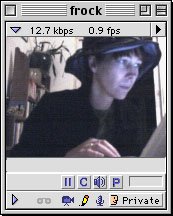
Helen Varley Jamieson, image from https://www.creative-catalyst.com/abc/people.html

Karla Ptacek, image from https://www.creative-catalyst.com/abc/people.html
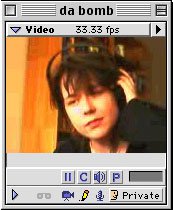
Leena Saarinen, image from https://www.creative-catalyst.com/abc/people.html
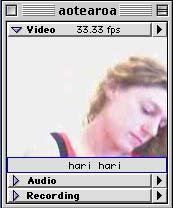
Vicki Smith, image from https://www.creative-catalyst.com/abc/people.html
We are the Colliders: four women who met online in 2001 and formed the globally distributed cyberformance troupe Avatar Body Collision in April 2002. We collaborated from our homes in (mostly) London, Helsinki, Aotearoa/New Zealand and cyberspace. We have still never been all in the same physical space at the same time. […]
In our hybrid online-offline cyberformance, spectators saw one proximal performer (in the same physical space as the spectators), while three remote performers appeared on webcams and in avatar worlds, projected onto screens in the hosting venue. Narrative elements moved back and forth, across and between these multiple stages, webcams and online spaces.
2002, Helen Varley Jamieson, Karla Ptacek, Leena Saarinen, and Vicki Smith, http://www.avatarbodycollision.org/
http://www.avatarbodycollision.org/
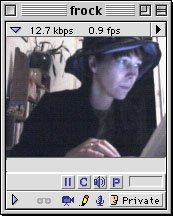
Helen Varley Jamieson, image from https://www.creative-catalyst.com/abc/people.html

Karla Ptacek, image from https://www.creative-catalyst.com/abc/people.html
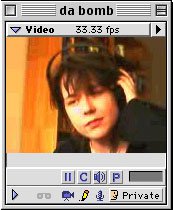
Leena Saarinen, image from https://www.creative-catalyst.com/abc/people.html
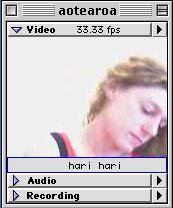
Vicki Smith, image from https://www.creative-catalyst.com/abc/people.html
(235)
2002
Gendering Processes within Technological Environments: A Cyberfeminist Issue
Radhika Gajjala, Annapurna Mamidipudi
In examining technological environments and community practices surrounding the situated design and use of technologies, we are concerned with the issue of whether “the bequeathed” are or are not empowered through the transfer of technologies produced and designed within sociocultural environments situated in a Westernized and Masculinized world. […] This article is based on a series of dialogues—published in print and online, “academic” and creative—between the two authors. One of us (Annapurna Mamidipudi) works with a group of volunteers who are trying to “revive” the old technology of vegetable dying and cotton handloom weaving in a few villages of South India. The other (Radhika Gajjala) is an academic whose work examines cross-cultural dialogue and the expression of women’s identity among “virtual communities” and diasporic/postcolonial/transnational subject formations. She engages in the production and maintenance of web-based and email-list based interactive e-spaces. Both are situated within an increasingly digital and transnational economy.
2002, Radhika Gajjala and Annapurna Mamidipudi, in “Cyberfeminisms,” ed. Radhika Gajjala, special issue, Rhizomes 4 (Spring 2002), http://www.rhizomes.net/issue4/gajjala.html, discovered in Morehshin Allahyari’s Radical Outside syllabus (x)
https://github.com/morehshin/TheRadicalOutside/blob/master/TheRadicalOutsideLibrary/ann-tbd/10-Gajjala-Mamidipuni.pdf https://www.are.na/block/7715185
In examining technological environments and community practices surrounding the situated design and use of technologies, we are concerned with the issue of whether “the bequeathed” are or are not empowered through the transfer of technologies produced and designed within sociocultural environments situated in a Westernized and Masculinized world. […] This article is based on a series of dialogues—published in print and online, “academic” and creative—between the two authors. One of us (Annapurna Mamidipudi) works with a group of volunteers who are trying to “revive” the old technology of vegetable dying and cotton handloom weaving in a few villages of South India. The other (Radhika Gajjala) is an academic whose work examines cross-cultural dialogue and the expression of women’s identity among “virtual communities” and diasporic/postcolonial/transnational subject formations. She engages in the production and maintenance of web-based and email-list based interactive e-spaces. Both are situated within an increasingly digital and transnational economy.
2002, Radhika Gajjala and Annapurna Mamidipudi, in “Cyberfeminisms,” ed. Radhika Gajjala, special issue, Rhizomes 4 (Spring 2002), http://www.rhizomes.net/issue4/gajjala.html, discovered in Morehshin Allahyari’s Radical Outside syllabus (x)
https://github.com/morehshin/TheRadicalOutside/blob/master/TheRadicalOutsideLibrary/ann-tbd/10-Gajjala-Mamidipuni.pdf https://www.are.na/block/7715185
(236)
2002
An Interrupted Postcolonial/Feminist Cyberethnography: Complicity and Resistance in the “Cyberfield”
Radhika Gajjala
Yet cyberspace is also a “space” which contains the possibility for disruptive cyborg-diasporic encounters. It is a space where the diasporic stories of the past (often told as if they were stories from the present)and of places left behind can reach the actual physical (socio-cultural in flux)places that are fetishized in the memory/nostalgia of the model native(diasporic) informants. The real places, however, are not the same (obviously) as in the memory of the diasporic storyteller. In cyborg-diaspora, those who have left home have taken on the role of native informant. They speak and thus silence narratives from “back home” within a powerfield that celebrates the “Westernized” as “progressive” and degrades the “third world” as “under-developed.” Unused to having their narratives challenged in shared public spaces, the cyborg-diaspora potentially faces the ‘real’ in the form of counternarratives from those “back home.”
2002, Radhika Gajjala, Feminist Media Studies 2 (2002): pp. 177–193; excerpt p. 179
https://www.are.na/block/7812079
Yet cyberspace is also a “space” which contains the possibility for disruptive cyborg-diasporic encounters. It is a space where the diasporic stories of the past (often told as if they were stories from the present)and of places left behind can reach the actual physical (socio-cultural in flux)places that are fetishized in the memory/nostalgia of the model native(diasporic) informants. The real places, however, are not the same (obviously) as in the memory of the diasporic storyteller. In cyborg-diaspora, those who have left home have taken on the role of native informant. They speak and thus silence narratives from “back home” within a powerfield that celebrates the “Westernized” as “progressive” and degrades the “third world” as “under-developed.” Unused to having their narratives challenged in shared public spaces, the cyborg-diaspora potentially faces the ‘real’ in the form of counternarratives from those “back home.”
2002, Radhika Gajjala, Feminist Media Studies 2 (2002): pp. 177–193; excerpt p. 179
https://www.are.na/block/7812079
(237)
2002
Razorgirls and Cyberdykes: Tracing Cyberfeminism and Thoughts on Its Use in a Legal Context
Bela Bonita Chatterjee
The present state of cyberstudies poses new questions of embodiment, of (gendered) relationships with technology, and the effects of cyberspace on queer issues such as identity, gender and sexuality. It is notable that in a legal context, whereas there has been much attention paid to technical issues that cyberspace poses, there has been little attention paid to these new issues above, or possible theoretical frameworks within which to contextualize them, or potential feminist perspectives. Put simply, the debates of cyberstudies, and cyberfeminism in particular, have as yet been largely unreflected in mainstream academic and practical legal discourse. The aim of this essay, then, is to begin a process of integration. By looking at the work of some cyberfeminists, the author attempts to give a clearer picture of key debates and strands of thought in cyberfeminism, and to start thinking about how cyberfeminist insights might be used as part of a useful theoretical framework that could inform those academics interested in law, queer issues, and cyberspace.
2002, Bela Bonita Chatterjee, International Journal of Sexuality and Gender Studies 7, (2002): pp. 197–213; excerpt from abstract
https://link.springer.com/article/10.1023%2FA%3A1015801317984
The present state of cyberstudies poses new questions of embodiment, of (gendered) relationships with technology, and the effects of cyberspace on queer issues such as identity, gender and sexuality. It is notable that in a legal context, whereas there has been much attention paid to technical issues that cyberspace poses, there has been little attention paid to these new issues above, or possible theoretical frameworks within which to contextualize them, or potential feminist perspectives. Put simply, the debates of cyberstudies, and cyberfeminism in particular, have as yet been largely unreflected in mainstream academic and practical legal discourse. The aim of this essay, then, is to begin a process of integration. By looking at the work of some cyberfeminists, the author attempts to give a clearer picture of key debates and strands of thought in cyberfeminism, and to start thinking about how cyberfeminist insights might be used as part of a useful theoretical framework that could inform those academics interested in law, queer issues, and cyberspace.
2002, Bela Bonita Chatterjee, International Journal of Sexuality and Gender Studies 7, (2002): pp. 197–213; excerpt from abstract
https://link.springer.com/article/10.1023%2FA%3A1015801317984
(238)
2002
Domain Errors! Cyberfeminist Practices
Maria Fernandez, Faith Wilding, Michelle M. Wright
A cyberfeminist politics must foster and welcome embodied differences and initiate desiring social relations, while refusing to disappear into the myths of virtuality. How autonomy and solidarity are struggled for and practiced matters profoundly. Doubts about the effectiveness of various contestational strategies on the Internet and in digital domains must be met with the willingness to experiment with a variety of tactics—even at the risk of failure. A cyberfeminist critique of the social relations of women—as they are affected by science and digital technologies—needs to be launched inside and outside of cyberspace simultaneously to include the many that do not have digital access. Each contribution to this book—whether text, image, performative project, manifest or rant—suggests strategies for critical and tactical cyberfeminisms.
2002, Maria Fernández, Faith Wilding, and Michelle Wright, eds. (New York: Autonomedia, subRosa, 2002); excerpt from Maria Fernández, Faith Wilding, and Michelle Wright, introduction to Fernández et al., Domain Errors! p. 1
Contributions by subRosa, Maria Fernandez, Faith Wilding, Michelle M. Wright, Lisa Nakamura, Irina Aristarkhova, Susanna Paasonen, Rhadika Gajjala, Annapurna Mamidipudi, Lucia Sommer, Christina Hung, Emily de Araujo, Pattie Belle Hastings, Tania Kupczack, Amelia Jones, Terri Kapsalis, Nell Tenhaaf, and Hyla Willis.
http://refugia.net/domainerrors/
A cyberfeminist politics must foster and welcome embodied differences and initiate desiring social relations, while refusing to disappear into the myths of virtuality. How autonomy and solidarity are struggled for and practiced matters profoundly. Doubts about the effectiveness of various contestational strategies on the Internet and in digital domains must be met with the willingness to experiment with a variety of tactics—even at the risk of failure. A cyberfeminist critique of the social relations of women—as they are affected by science and digital technologies—needs to be launched inside and outside of cyberspace simultaneously to include the many that do not have digital access. Each contribution to this book—whether text, image, performative project, manifest or rant—suggests strategies for critical and tactical cyberfeminisms.
2002, Maria Fernández, Faith Wilding, and Michelle Wright, eds. (New York: Autonomedia, subRosa, 2002); excerpt from Maria Fernández, Faith Wilding, and Michelle Wright, introduction to Fernández et al., Domain Errors! p. 1
Contributions by subRosa, Maria Fernandez, Faith Wilding, Michelle M. Wright, Lisa Nakamura, Irina Aristarkhova, Susanna Paasonen, Rhadika Gajjala, Annapurna Mamidipudi, Lucia Sommer, Christina Hung, Emily de Araujo, Pattie Belle Hastings, Tania Kupczack, Amelia Jones, Terri Kapsalis, Nell Tenhaaf, and Hyla Willis.
http://refugia.net/domainerrors/
(239)
2002
Cybernetic Social Space
Nell Tenhaaf
How I deviate from the norm is that my on-line sex encounters have left me with a surprisingly strong sense of empathy toward the participants in this kind of vicarious sexual expression, and related to this, an unexpected impression that my intellectual response enriches the overall experience. The discovery of subtle subject/object reversals in these encounters, and the recognition of moving between participant and observer roles, strike me as potentially creative features of what Sean Cubitt calls “post-privacy culture.” Because there are real people interacting here, caught up in the ambiguity of distance and intimacy characteristic of on-line display exchanges, this is a zone that can help us appreciate how the integration of computer technology into so many facets of our communications is changing social relations. If contemporary culture is indeed becoming increasingly characterized by post-privacy, artificiality, and cybernetic human–machine interaction, it seems important to understand and nurture relational qualities like empathy that can apply to both familiar and new forms of exchange.
2002, Nell Tenhaaf, in Domain Errors! Cyberfeminist Practices, eds. Maria Fernandez, Faith Wilding, and Michelle Wright (New York: Autonomedia, 2002), pp. 251–256; excerpt p. 256
https://www.are.na/block/7723314 http://refugia.net/domainerrors/
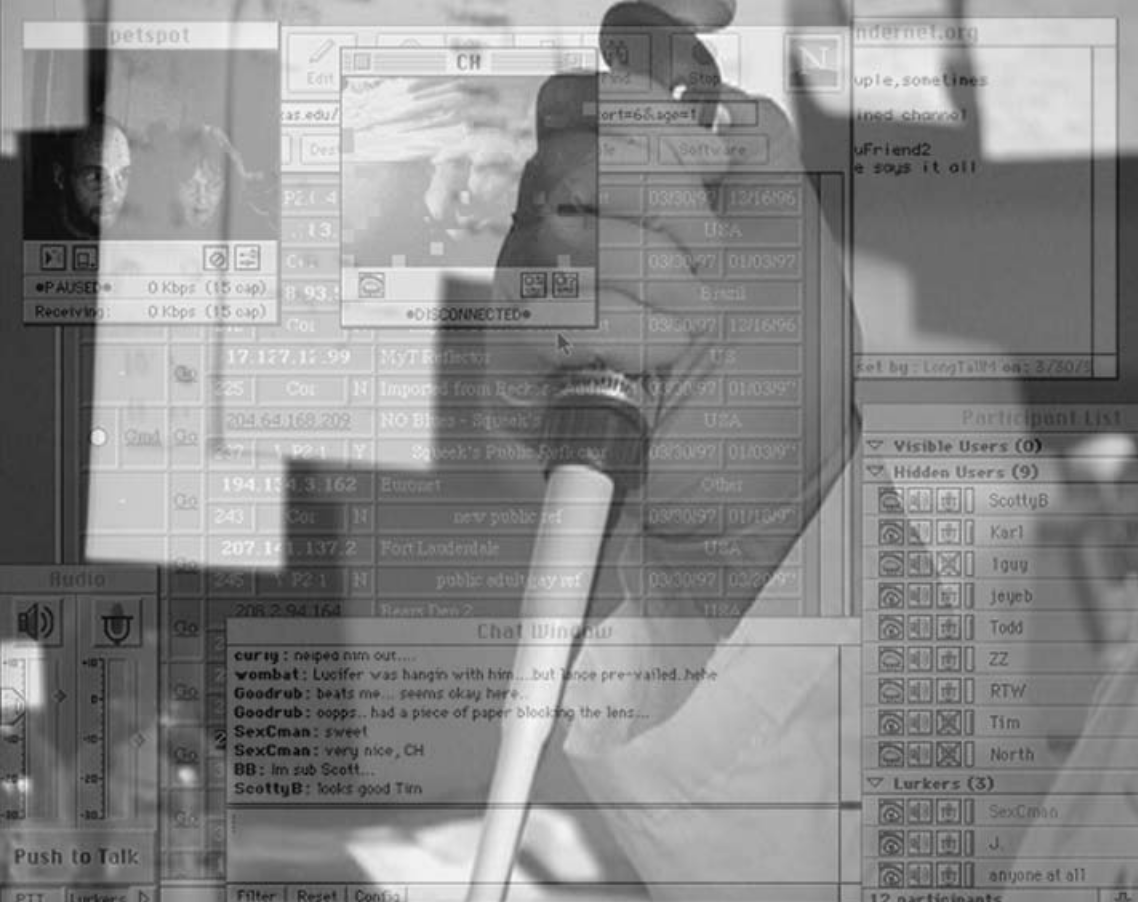
“Session #1–3, Fellow-feeling, 31/03/97 from The Empathy Sessions, 2000, light box (aluminum, LightJet transparency), 14 x 17 x 31/2in.”, photo from PDF

“Session #2–2, Care, 30/11/97” from The Empathy Sessions, 2000, C-print, 173/4 x 235/8in.”, image from PDF
How I deviate from the norm is that my on-line sex encounters have left me with a surprisingly strong sense of empathy toward the participants in this kind of vicarious sexual expression, and related to this, an unexpected impression that my intellectual response enriches the overall experience. The discovery of subtle subject/object reversals in these encounters, and the recognition of moving between participant and observer roles, strike me as potentially creative features of what Sean Cubitt calls “post-privacy culture.” Because there are real people interacting here, caught up in the ambiguity of distance and intimacy characteristic of on-line display exchanges, this is a zone that can help us appreciate how the integration of computer technology into so many facets of our communications is changing social relations. If contemporary culture is indeed becoming increasingly characterized by post-privacy, artificiality, and cybernetic human–machine interaction, it seems important to understand and nurture relational qualities like empathy that can apply to both familiar and new forms of exchange.
2002, Nell Tenhaaf, in Domain Errors! Cyberfeminist Practices, eds. Maria Fernandez, Faith Wilding, and Michelle Wright (New York: Autonomedia, 2002), pp. 251–256; excerpt p. 256
https://www.are.na/block/7723314 http://refugia.net/domainerrors/
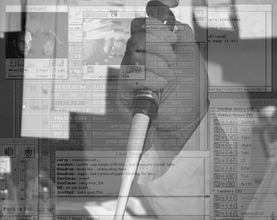
“Session #1–3, Fellow-feeling, 31/03/97 from The Empathy Sessions, 2000, light box (aluminum, LightJet transparency), 14 x 17 x 31/2in.”, photo from PDF

“Session #2–2, Care, 30/11/97” from The Empathy Sessions, 2000, C-print, 173/4 x 235/8in.”, image from PDF
(240)
2002
Hands-on Reiki
Christina Hung
“Hands-On Reiki,” Christina Hung, Domain Errors: Cyberfeminist Practices! p.162-163 (New York: Autonomedia 2002), a subRosa project. The book and its contents may be freely quoted for non-commercial purposes, however; the author(s) and publisher would like to be so informed at the addresses below: info@autonomedia.org subrosa@cyberfeminism.net
http://refugia.net/domainerrors/
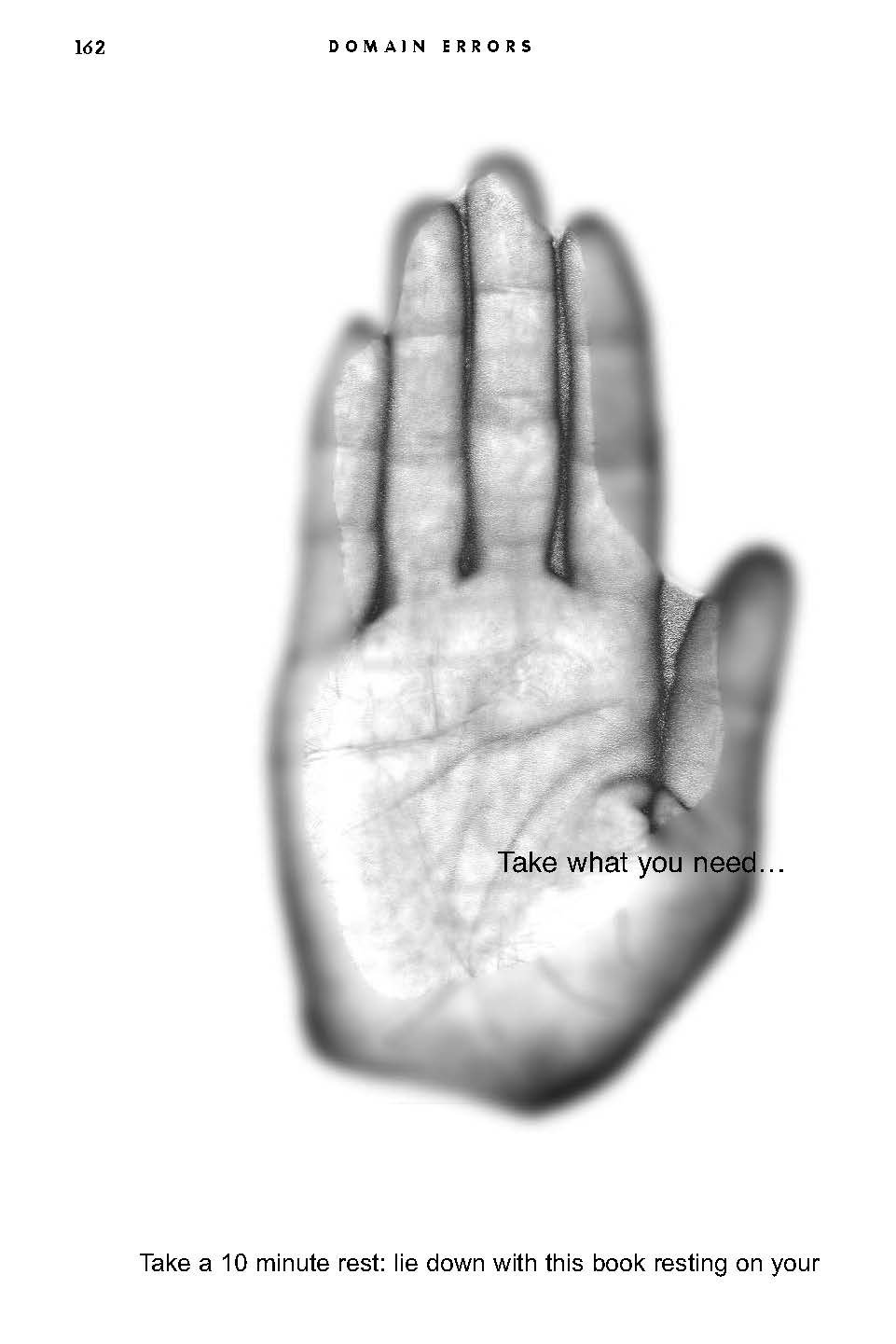
“Take what you need... Take a 10 minute rest: lie down with this book resting on your”
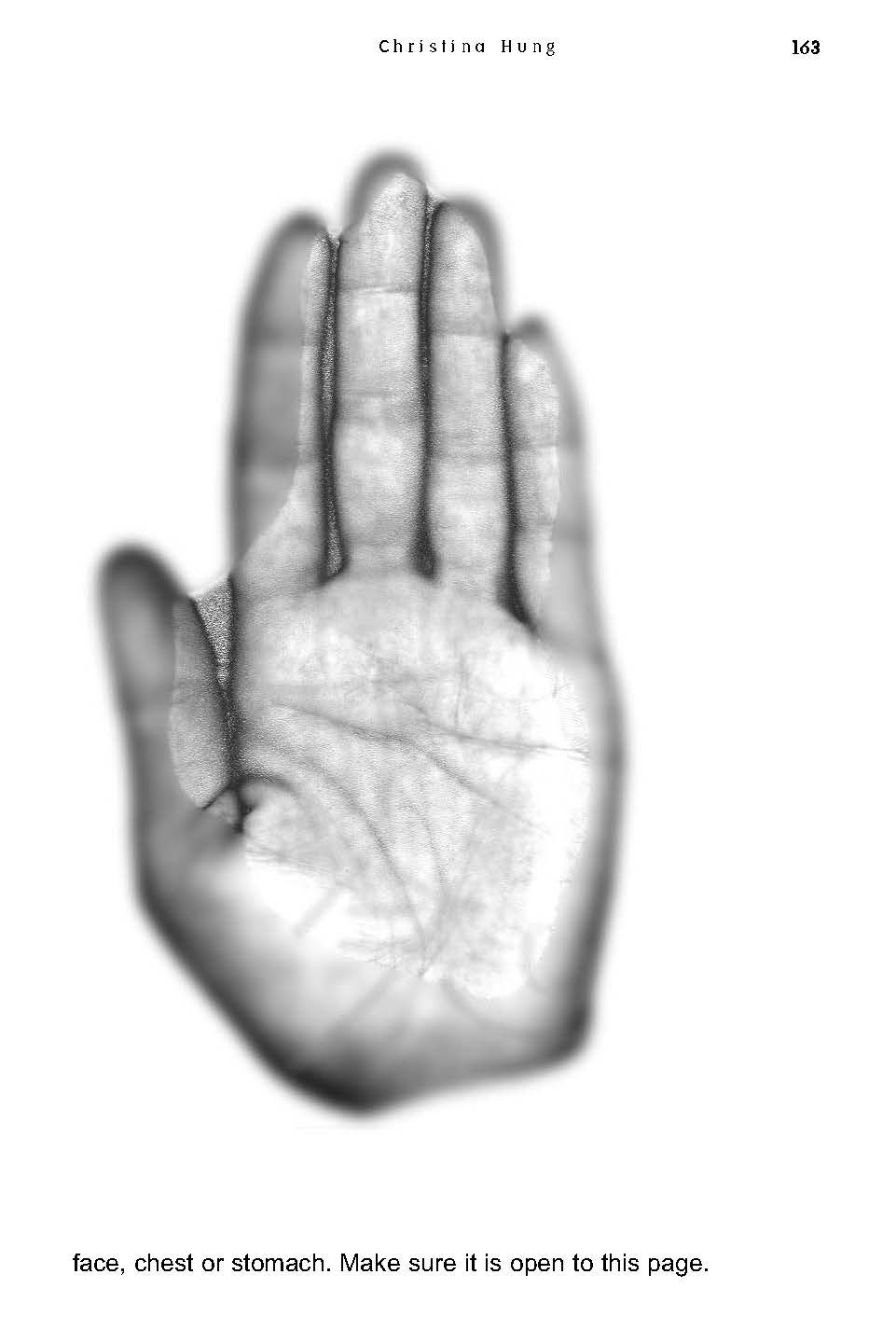
”face, chest or stomach. Make sure it is open to this page.”
“Hands-On Reiki,” Christina Hung, Domain Errors: Cyberfeminist Practices! p.162-163 (New York: Autonomedia 2002), a subRosa project. The book and its contents may be freely quoted for non-commercial purposes, however; the author(s) and publisher would like to be so informed at the addresses below: info@autonomedia.org subrosa@cyberfeminism.net
http://refugia.net/domainerrors/
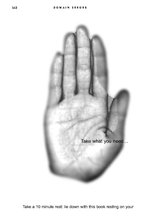
“Take what you need... Take a 10 minute rest: lie down with this book resting on your”
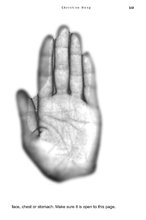
”face, chest or stomach. Make sure it is open to this page.”
(241)
2002
Rhizomes 4: Cyberfeminisms
Radhika Gajjala
In relation to cyberfeminism, then, how might we read the (in)visibility of “gender” across cyberspace? Everywhere we turn these days there is a celebration of women using the Internet or some other computer related technology. But what are we allowed to use these technologies for and within which contexts? Why are we allowed? Who are the women allowed? Under what conditions are we allowed? Why are we under a constant state of ‘being allowed’? Where and how can we locate women’s agency in relation to these spaces and practices? At the same time as there is this mediated visibility of “gender” in relation to computers and cyberspace, much discourse surrounding “new” technologies implicitly assumes the transparency of these technologies. Therefore, even as women are displayed visibly in relation to various technological contexts, the complex gendered, raced, classed, embodied—in short the socio-cultural and economically situated—nature of technological design and practices are not acknowledged often enough.
2002, Radhika Gajjala, ed.; excerpt from Radhika Gajjala, introduction to “Cyberfeminisms,” ed. Radhika Gajjala, special issue, Rhizomes 4 (Spring 2002), http://rhizomes.net/issue4/intro.html
Contributors include Radhika Gajjala, Annapurna Mamidipudi, Susanna Paasonen, Paula Graham, Jodey Castricano, Doreen Piano, Michelle Kendrick, Kristine Blair, Angela Haas, and Davin Heckman.
In relation to cyberfeminism, then, how might we read the (in)visibility of “gender” across cyberspace? Everywhere we turn these days there is a celebration of women using the Internet or some other computer related technology. But what are we allowed to use these technologies for and within which contexts? Why are we allowed? Who are the women allowed? Under what conditions are we allowed? Why are we under a constant state of ‘being allowed’? Where and how can we locate women’s agency in relation to these spaces and practices? At the same time as there is this mediated visibility of “gender” in relation to computers and cyberspace, much discourse surrounding “new” technologies implicitly assumes the transparency of these technologies. Therefore, even as women are displayed visibly in relation to various technological contexts, the complex gendered, raced, classed, embodied—in short the socio-cultural and economically situated—nature of technological design and practices are not acknowledged often enough.
2002, Radhika Gajjala, ed.; excerpt from Radhika Gajjala, introduction to “Cyberfeminisms,” ed. Radhika Gajjala, special issue, Rhizomes 4 (Spring 2002), http://rhizomes.net/issue4/intro.html
Contributors include Radhika Gajjala, Annapurna Mamidipudi, Susanna Paasonen, Paula Graham, Jodey Castricano, Doreen Piano, Michelle Kendrick, Kristine Blair, Angela Haas, and Davin Heckman.
(242)
2002
Modem of One’s Own: The Subject of Cyberfeminism
Jodey Castricano
I’m interested in how the structural/spatial metaphor of [Virginia] Woolf’s “room” [in A Room of One’s Own] has contributed to 1970s and 80s feminist claims about “women’s space” in contrast to the indeterminate “dimensions” of cyberspace that inform cyberfeminism. As Nancy Stepan claims, “A theory of metaphor is as critical to science as it is to the humanities.” The paper, therefore, is concerned with the identity politics of post-industrial feminism(s) implicit in what I'd like to call a modem of one's own, a cyber-driven metaphor which is intended to evoke the discursive inter-relations between embodiment, technology, science and signifying practices while keeping in mind the pervasive influence of Woolf’s text in feminist theory. To this end, I will examine the epistemological and ontological differences between the subject of Woolf’s “room” and the figure of Donna Haraway’s cyborg as reflecting a perceptual shift in feminism traceable in strategies of interpretation.
2002, Jodey Castricano, in “Cyberfeminisms,” ed. Radhika Gajjala, special issue, Rhizomes 4 (224) (Spring 2002), http://rhizomes.net/issue4/castricano.html
I’m interested in how the structural/spatial metaphor of [Virginia] Woolf’s “room” [in A Room of One’s Own] has contributed to 1970s and 80s feminist claims about “women’s space” in contrast to the indeterminate “dimensions” of cyberspace that inform cyberfeminism. As Nancy Stepan claims, “A theory of metaphor is as critical to science as it is to the humanities.” The paper, therefore, is concerned with the identity politics of post-industrial feminism(s) implicit in what I'd like to call a modem of one's own, a cyber-driven metaphor which is intended to evoke the discursive inter-relations between embodiment, technology, science and signifying practices while keeping in mind the pervasive influence of Woolf’s text in feminist theory. To this end, I will examine the epistemological and ontological differences between the subject of Woolf’s “room” and the figure of Donna Haraway’s cyborg as reflecting a perceptual shift in feminism traceable in strategies of interpretation.
2002, Jodey Castricano, in “Cyberfeminisms,” ed. Radhika Gajjala, special issue, Rhizomes 4 (224) (Spring 2002), http://rhizomes.net/issue4/castricano.html
(243)
2002
Laugh of the Modem: Interactive Technologies and l’ecriture feminine
Michelle Kendrick
Hypertext is imagined as a kind of electronic jouissance—made safe for white male academics by promising both to transcend the material body and turn the text into all “fringes.” In this essay I examine the claims of new media, in relation to feminist writings of the 1970’s and 1980’s, specifically ecriture feminine, to argue that claims of writing are inextricably twined with received notions of gender, coded—even overdetermined—as active, passive, penetrating and receptive and that these gendered notions of writing can profoundly affect the way we teach. Despite theoretical gestures that have been critiqued as essentializing and colonizing, several French feminists recognized and sought to affirm the connections between materiality and cognition through a celebration of embodied writing; hypertext theorists rarely acknowledge the connections among bodies, gender and writing and seek instead to disembody the writing process, reifying instead the “mind,” and a philosophical history that glorifies masculine cognition.
2002, Michelle Kendrick, in “Cyberfeminisms,” ed. Radhika Gajjala, special issue, Rhizomes 4 (Spring 2002), http://www.rhizomes.net/issue4/kendrick.html
Hypertext is imagined as a kind of electronic jouissance—made safe for white male academics by promising both to transcend the material body and turn the text into all “fringes.” In this essay I examine the claims of new media, in relation to feminist writings of the 1970’s and 1980’s, specifically ecriture feminine, to argue that claims of writing are inextricably twined with received notions of gender, coded—even overdetermined—as active, passive, penetrating and receptive and that these gendered notions of writing can profoundly affect the way we teach. Despite theoretical gestures that have been critiqued as essentializing and colonizing, several French feminists recognized and sought to affirm the connections between materiality and cognition through a celebration of embodied writing; hypertext theorists rarely acknowledge the connections among bodies, gender and writing and seek instead to disembody the writing process, reifying instead the “mind,” and a philosophical history that glorifies masculine cognition.
2002, Michelle Kendrick, in “Cyberfeminisms,” ed. Radhika Gajjala, special issue, Rhizomes 4 (Spring 2002), http://www.rhizomes.net/issue4/kendrick.html
(244)
2002
Cyborgian Voices: Vignettes of Virtual Identity
Kristine Blair, Angela Haas, Davin Heckman
Thus, this concluding piece in this special Cyberfeminisms issue of Rhizomes seeks to blend the voices by and about women about the role that technology plays in their personal and professional lives. This call for such an approach in current and future cyberfeminist theory and practice will further suggest that there is no one female, or even one cyborgian identity, and that continuing discussions, print or otherwise, should further acknowledge not only varying cultural contexts but also varying “personal domains of work, community, home …” In this sense, the inclusion of women's voices about their own literacy and technology demands, as well as their love-hate relationship with technology is a call to all cyberfeminists …
2002, Kristine Blair, Angela Haas, and Davin Heckman, in “Cyberfeminisms,” ed. Radhika Gajjala, special issue, Rhizomes 4 (Spring 2002), http://rhizomes.net/issue4/cyborgian.html
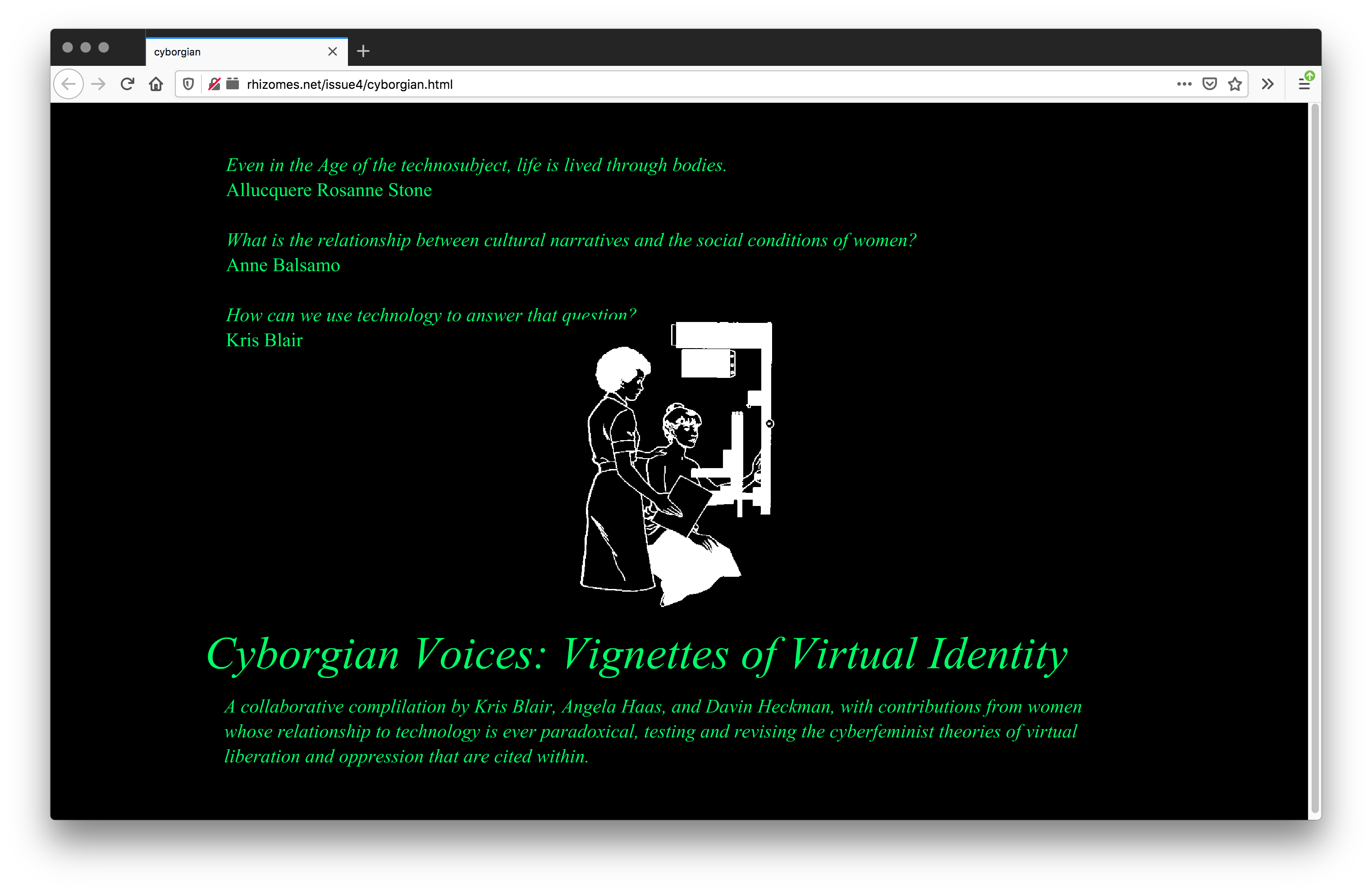
Screenshot, 2020, Firefox v76.0.1 on Mac OS 10.13.3; http://rhizomes.net/issue4/cyborgian.html
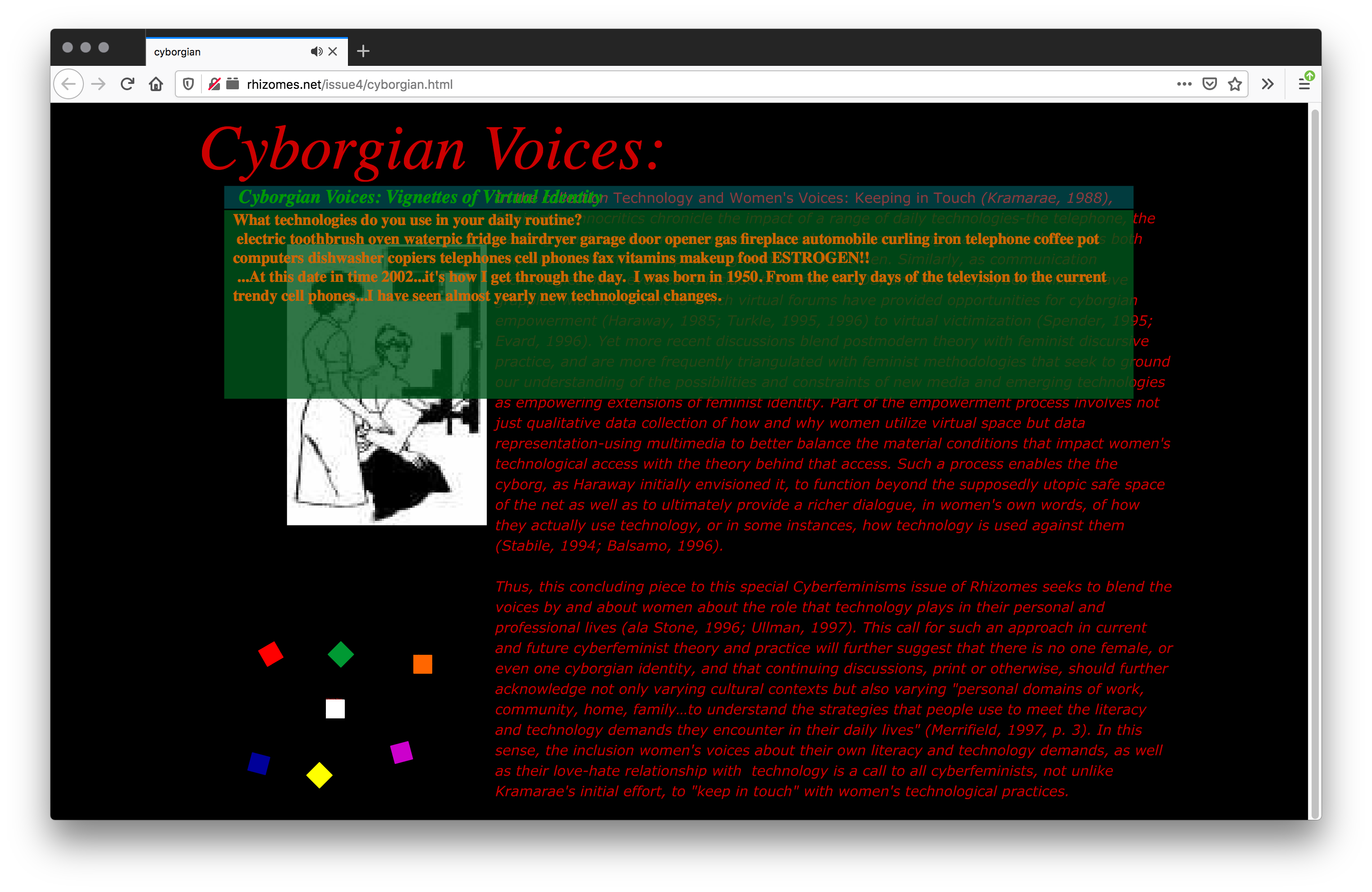
Screenshot, 2020, Firefox v76.0.1 on Mac OS 10.13.3; http://rhizomes.net/issue4/cyborgian.html

“Computer,” Screenshot, 2020, Firefox v76.0.1 on Mac OS 10.13.3; http://rhizomes.net/issue4/cyborgian.html

“The Future,” Screenshot, 2020, Firefox v76.0.1 on Mac OS 10.13.3; http://rhizomes.net/issue4/cyborgian.html
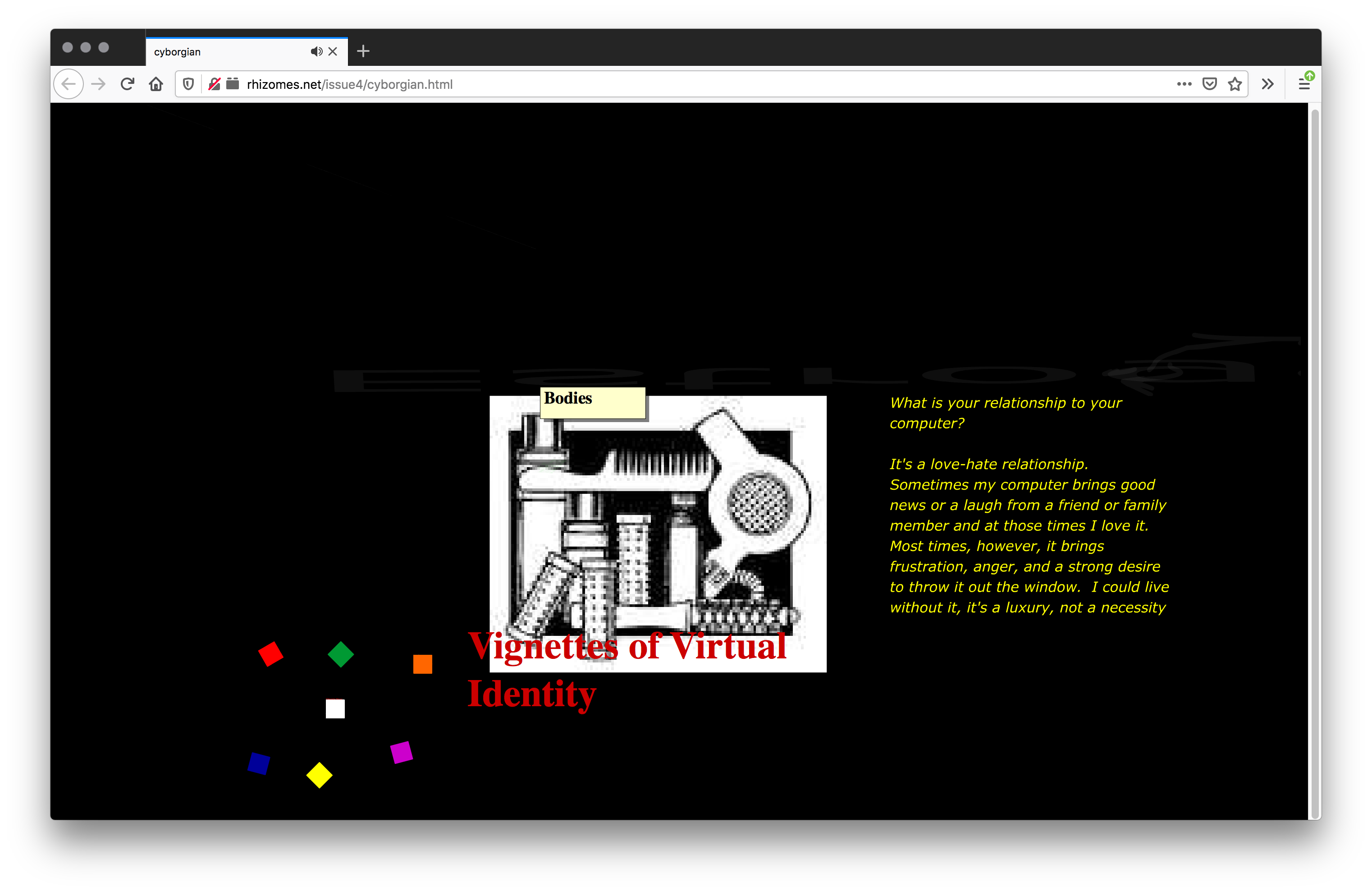
“Bodies,” Screenshot, 2020, Firefox v76.0.1 on Mac OS 10.13.3; http://rhizomes.net/issue4/cyborgian.html
Thus, this concluding piece in this special Cyberfeminisms issue of Rhizomes seeks to blend the voices by and about women about the role that technology plays in their personal and professional lives. This call for such an approach in current and future cyberfeminist theory and practice will further suggest that there is no one female, or even one cyborgian identity, and that continuing discussions, print or otherwise, should further acknowledge not only varying cultural contexts but also varying “personal domains of work, community, home …” In this sense, the inclusion of women's voices about their own literacy and technology demands, as well as their love-hate relationship with technology is a call to all cyberfeminists …
2002, Kristine Blair, Angela Haas, and Davin Heckman, in “Cyberfeminisms,” ed. Radhika Gajjala, special issue, Rhizomes 4 (Spring 2002), http://rhizomes.net/issue4/cyborgian.html
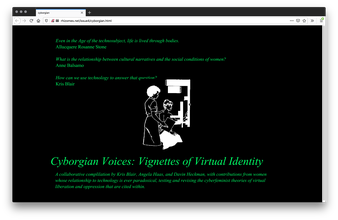
Screenshot, 2020, Firefox v76.0.1 on Mac OS 10.13.3; http://rhizomes.net/issue4/cyborgian.html
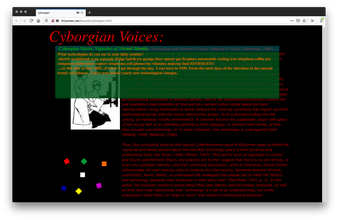
Screenshot, 2020, Firefox v76.0.1 on Mac OS 10.13.3; http://rhizomes.net/issue4/cyborgian.html

“Computer,” Screenshot, 2020, Firefox v76.0.1 on Mac OS 10.13.3; http://rhizomes.net/issue4/cyborgian.html
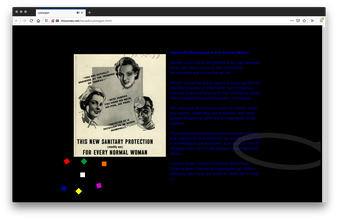
“The Future,” Screenshot, 2020, Firefox v76.0.1 on Mac OS 10.13.3; http://rhizomes.net/issue4/cyborgian.html

“Bodies,” Screenshot, 2020, Firefox v76.0.1 on Mac OS 10.13.3; http://rhizomes.net/issue4/cyborgian.html
(245)
2002
Sour Thunder
Mendi + Keith Obadike
As net artists, the Internet is for us a way for us to be in dialogue with people who are not in our physical space and to comment on how our black presence is engaged or ignored on the net or in physical spaces. Because of our medium, the idea of “the hacker” proves a fruitful metaphor through which to think about our presence. Hacking brings into view so many of the questions about authorization, proper behavior, the flow of power, and the security of the status quo that surround our artistic and every day statements.
For us, the idea of hacking is not simply about computer systems. It is also about other codes, languages, systems that can be broken into or apart. Hacking is a subversive kind of translation, a transgressive kind of understanding what is denied us, and a way of speaking. Net.art is just one language we speak. We cut through it when we speak our perspectives and judgments. But as with any language, it also speaks through us, cutting through our intentions and ways of doing things. As a result, we have used this space to think through the problem of language and power and asked others to join us.
2002, Mendi + Keith Obadike, http://www.blacknetart.com/Stage.htm; referred by Salome Asega
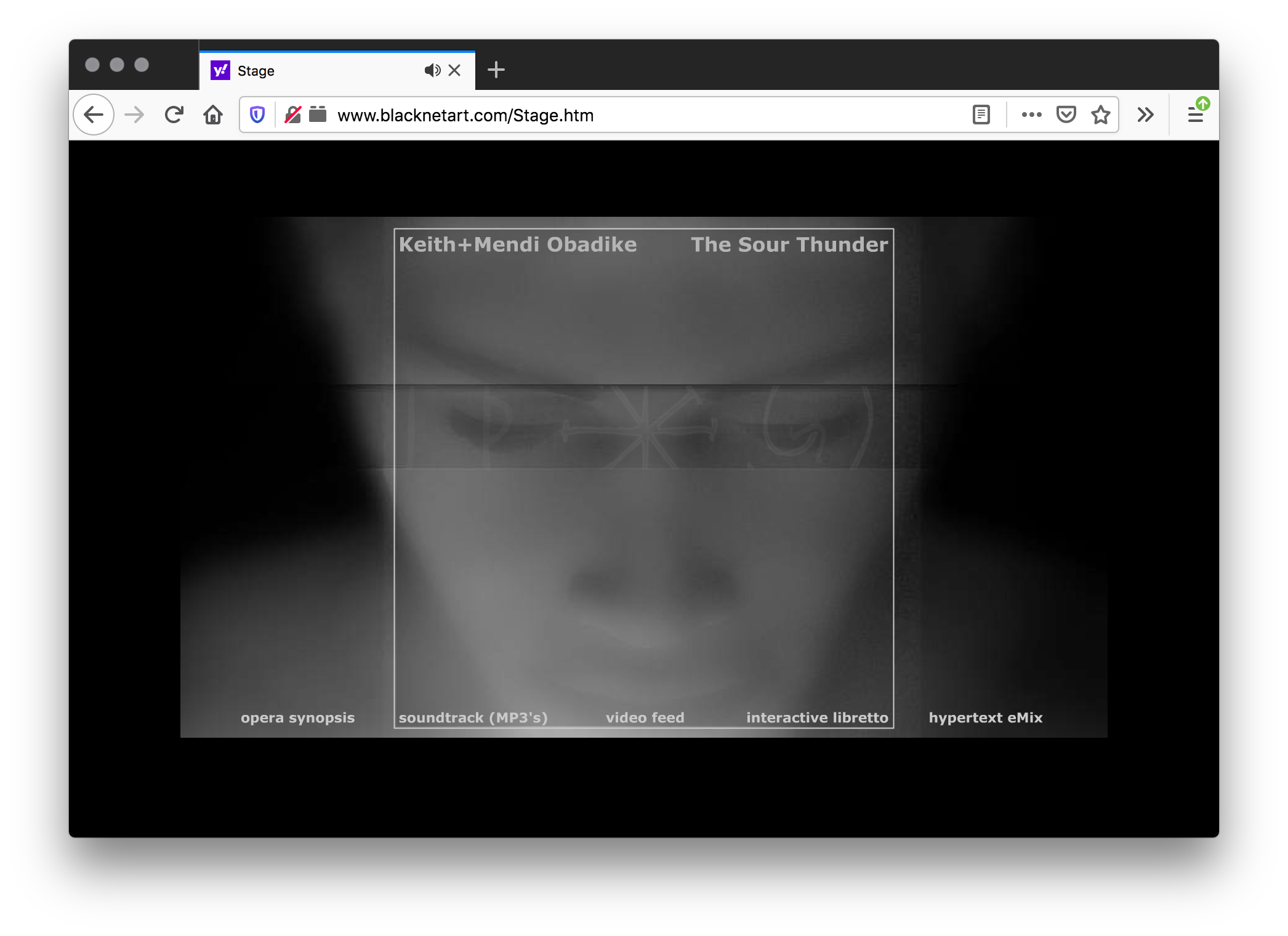
Screenshot, 2020, Firefox v76.0.1 on Mac OS 10.13.3; http://www.blacknetart.com/Stage.htm
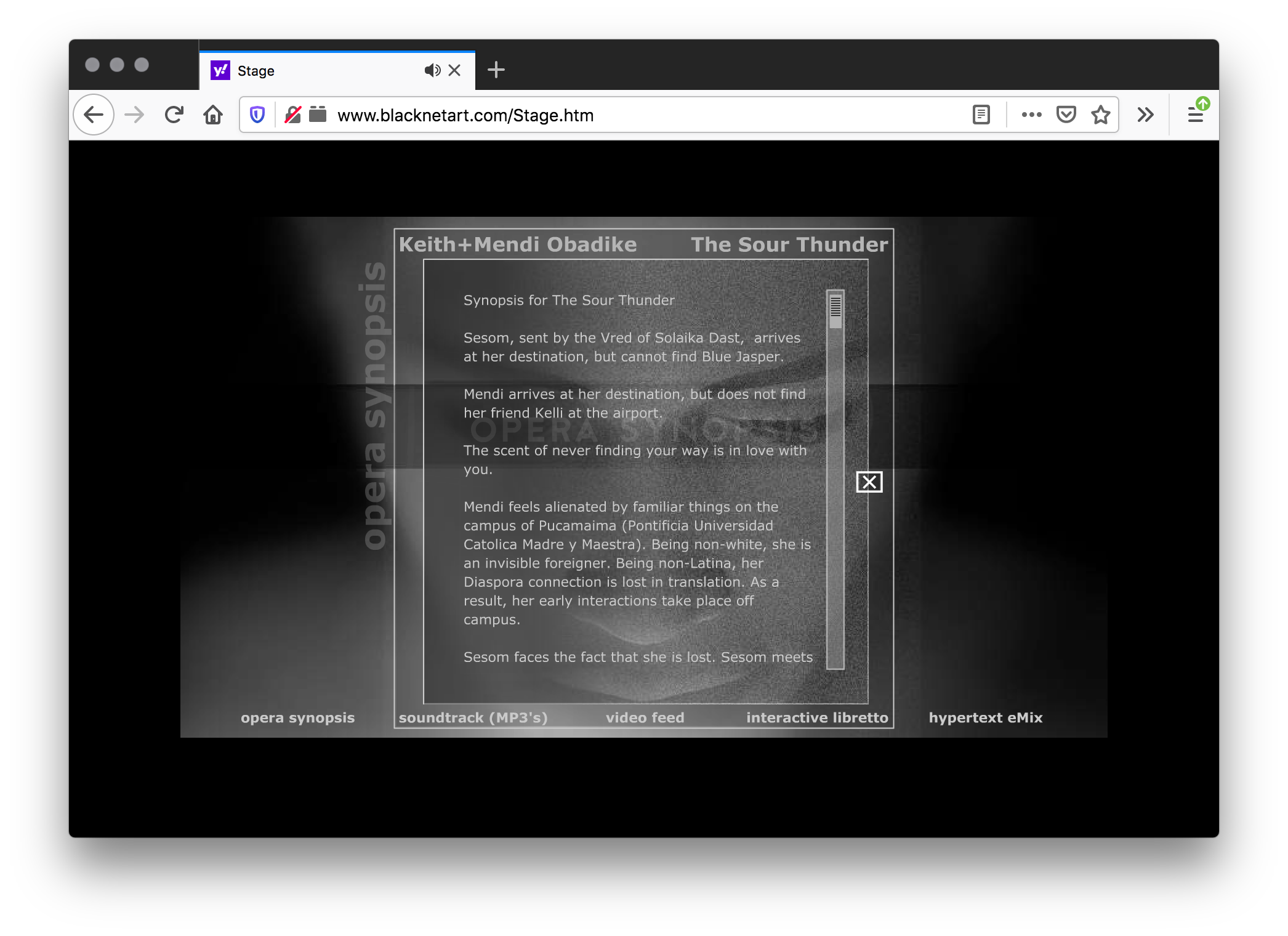
“Opera Synopsis”, Screenshot, 2020, Firefox v76.0.1 on Mac OS 10.13.3; http://www.blacknetart.com/Stage.htm

“hypertext eMix”, Screenshot, 2020, Firefox v76.0.1 on Mac OS 10.13.3; http://www.blacknetart.com/Stage.htm
As net artists, the Internet is for us a way for us to be in dialogue with people who are not in our physical space and to comment on how our black presence is engaged or ignored on the net or in physical spaces. Because of our medium, the idea of “the hacker” proves a fruitful metaphor through which to think about our presence. Hacking brings into view so many of the questions about authorization, proper behavior, the flow of power, and the security of the status quo that surround our artistic and every day statements.
For us, the idea of hacking is not simply about computer systems. It is also about other codes, languages, systems that can be broken into or apart. Hacking is a subversive kind of translation, a transgressive kind of understanding what is denied us, and a way of speaking. Net.art is just one language we speak. We cut through it when we speak our perspectives and judgments. But as with any language, it also speaks through us, cutting through our intentions and ways of doing things. As a result, we have used this space to think through the problem of language and power and asked others to join us.
2002, Mendi + Keith Obadike, http://www.blacknetart.com/Stage.htm; referred by Salome Asega
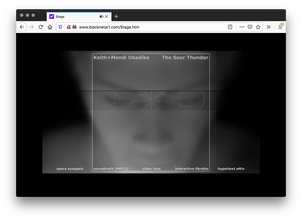
Screenshot, 2020, Firefox v76.0.1 on Mac OS 10.13.3; http://www.blacknetart.com/Stage.htm
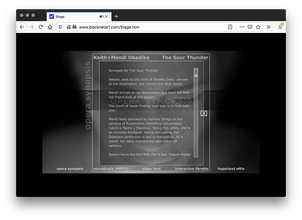
“Opera Synopsis”, Screenshot, 2020, Firefox v76.0.1 on Mac OS 10.13.3; http://www.blacknetart.com/Stage.htm
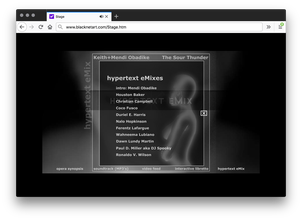
“hypertext eMix”, Screenshot, 2020, Firefox v76.0.1 on Mac OS 10.13.3; http://www.blacknetart.com/Stage.htm
(246)
2002
Interaction of Coloreds
Mendi + Keith Obadike
The IOC Color Check System® is faster and more accurate than any other system for skin color verification. That old adage is right: it takes one to know one. IOC founders Keith and Mendi (who would formerly be classified as a darkie and a redbone, respectively) developed this state-of-the-art system after years of detailed Diasporic research. They’ve been allowed and denied access to some of the most exclusive organizations in the Americas. Our system is based on techniques refined over centuries, aided by the latest digital image processing technologies. Do you worry that a fair-skinned person of African descent might register as white in your browser? Never fear. White-skinned coloreds are always assigned separate hex codes. Our system reserves the hex code #FFFFFF for “true whites” so that our customers feel as secure as a snowflake falling on a lily, floating in cream and rising to the top. (See contractual fine print for the IOC definition of “true white’.) Our precise image readings are compared to historical family records and our own international digital archives.
2002, Mendi + Keith Obadike, http://www.blacknetart.com/IOCccs.html
https://www.youtube.com/watch?time_continue=36&v=OByz2vZlXJg&feature=emb_title

Screenshot, 2020, Firefox v76.0.1 on Mac OS 10.13.3; http://blacknetart.com/IOCccs.html

artifact from http://blacknetart.com/IOCccs.html

artifact from http://blacknetart.com/IOCccs.html
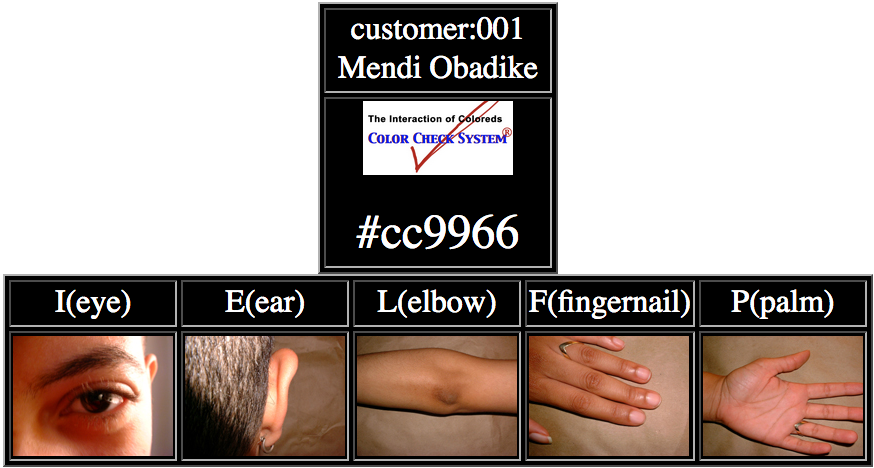
“customer 001 Mendi Obadike #cc9966”, artifact from http://blacknetart.com/IOCccs.html
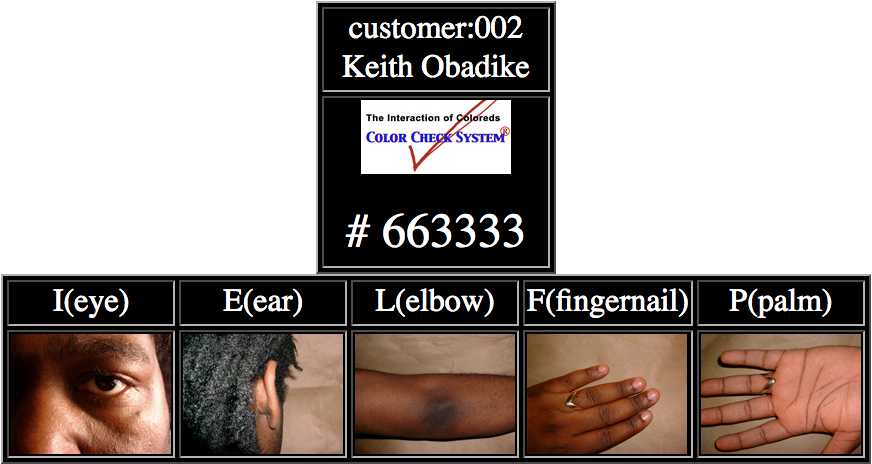
“customer 002 Keith Obadike #663333”, artifact from http://blacknetart.com/IOCccs.html
The IOC Color Check System® is faster and more accurate than any other system for skin color verification. That old adage is right: it takes one to know one. IOC founders Keith and Mendi (who would formerly be classified as a darkie and a redbone, respectively) developed this state-of-the-art system after years of detailed Diasporic research. They’ve been allowed and denied access to some of the most exclusive organizations in the Americas. Our system is based on techniques refined over centuries, aided by the latest digital image processing technologies. Do you worry that a fair-skinned person of African descent might register as white in your browser? Never fear. White-skinned coloreds are always assigned separate hex codes. Our system reserves the hex code #FFFFFF for “true whites” so that our customers feel as secure as a snowflake falling on a lily, floating in cream and rising to the top. (See contractual fine print for the IOC definition of “true white’.) Our precise image readings are compared to historical family records and our own international digital archives.
2002, Mendi + Keith Obadike, http://www.blacknetart.com/IOCccs.html
https://www.youtube.com/watch?time_continue=36&v=OByz2vZlXJg&feature=emb_title

Screenshot, 2020, Firefox v76.0.1 on Mac OS 10.13.3; http://blacknetart.com/IOCccs.html

artifact from http://blacknetart.com/IOCccs.html

artifact from http://blacknetart.com/IOCccs.html
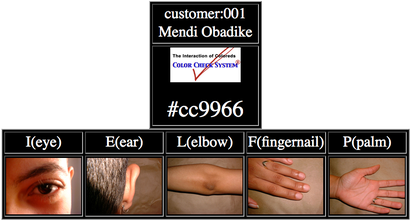
“customer 001 Mendi Obadike #cc9966”, artifact from http://blacknetart.com/IOCccs.html
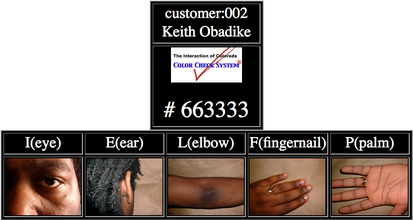
“customer 002 Keith Obadike #663333”, artifact from http://blacknetart.com/IOCccs.html
(247)
2002
Velvet Strike
Anne-Marie Schleiner
You are for or against us, you are with us, “the one,” or you are with the enemy is the underlying logic of the West, as I understood a talk by Marina Gržinić at an international cyberfeminist conference in Germany in December 2001. (Pre-axis of evil.) Although computer games replicate this binary competitive logic, maybe there is something ultimately subversive in the knowledge that it is only a game, that at any moment you may switch sides with the “other,” you may play the terrorist side in Counter-Strike. But reality games pretend to erase this awareness. And if you are going to converge network shooter games and contemporary middle eastern politics into a game, (Counter-Strike), then you leave out a number of complexities such as economics, religions, families, food, children, women, refugee camps, flesh bodies and blood, smell etc.
2002, Anne-Marie Schleiner, http://www.opensorcery.net/velvet-strike/about.html
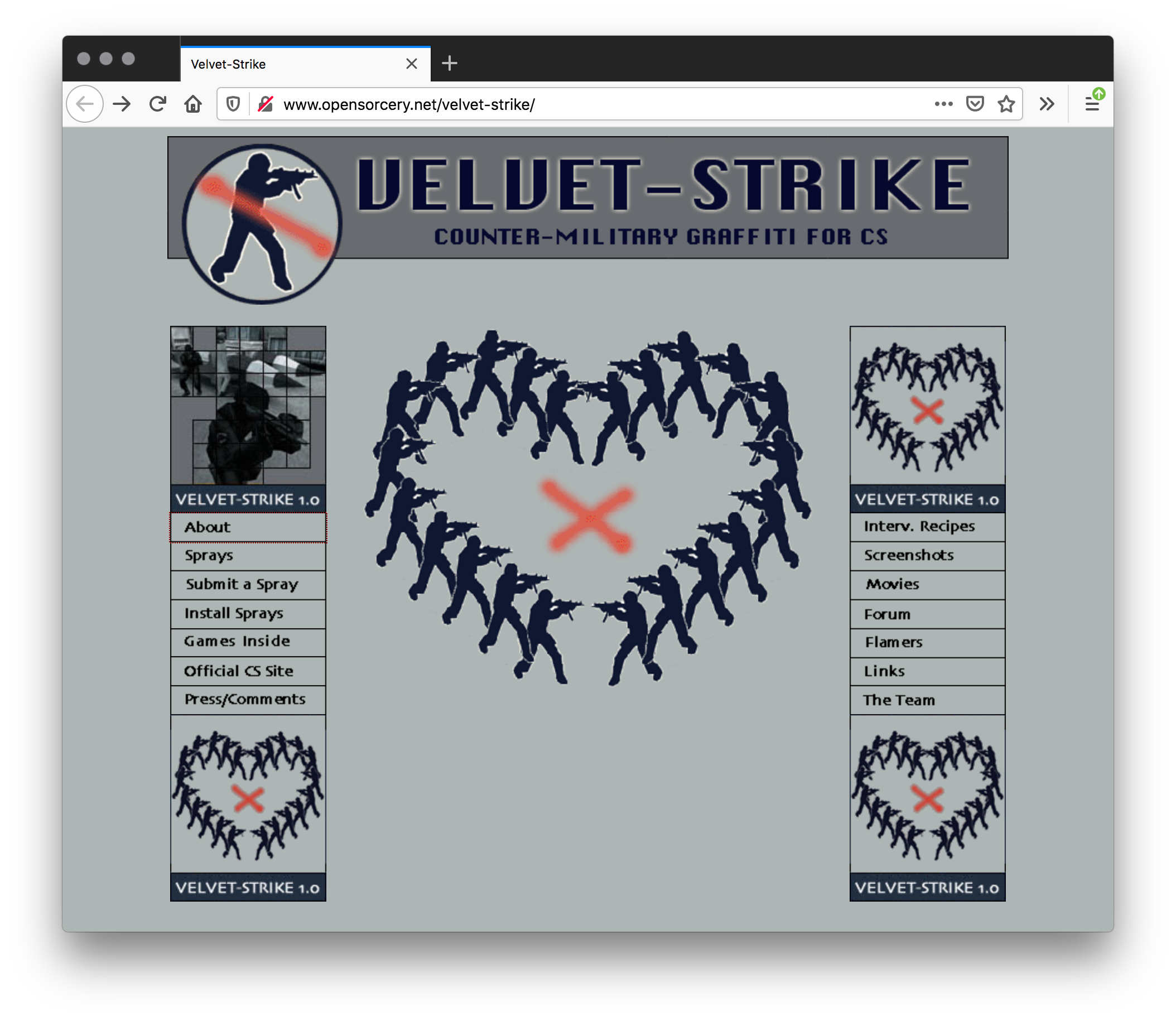
Screenshot, 2020, Firefox v76.0.1 on Mac OS 10.13.3; http://www.opensorcery.net/velvet-strike/about.html
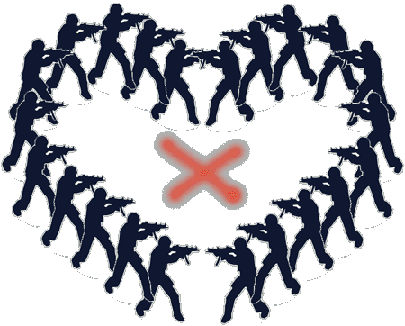
“Heart” by A.M.S., download from http://www.opensorcery.net/velvet-strike/sprays.html

"fsscr flight sim" by Joan Leandre, download from http://www.opensorcery.net/velvet-strike/sprays.html

"love1" by Brody Condon, download from http://www.opensorcery.net/velvet-strike/sprays.html

"Online Peace" by G.U.I., download from http://www.opensorcery.net/velvet-strike/sprays.html
You are for or against us, you are with us, “the one,” or you are with the enemy is the underlying logic of the West, as I understood a talk by Marina Gržinić at an international cyberfeminist conference in Germany in December 2001. (Pre-axis of evil.) Although computer games replicate this binary competitive logic, maybe there is something ultimately subversive in the knowledge that it is only a game, that at any moment you may switch sides with the “other,” you may play the terrorist side in Counter-Strike. But reality games pretend to erase this awareness. And if you are going to converge network shooter games and contemporary middle eastern politics into a game, (Counter-Strike), then you leave out a number of complexities such as economics, religions, families, food, children, women, refugee camps, flesh bodies and blood, smell etc.
2002, Anne-Marie Schleiner, http://www.opensorcery.net/velvet-strike/about.html
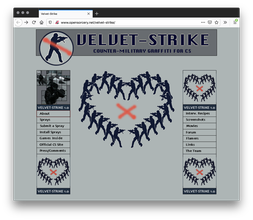
Screenshot, 2020, Firefox v76.0.1 on Mac OS 10.13.3; http://www.opensorcery.net/velvet-strike/about.html

“Heart” by A.M.S., download from http://www.opensorcery.net/velvet-strike/sprays.html

"fsscr flight sim" by Joan Leandre, download from http://www.opensorcery.net/velvet-strike/sprays.html

"love1" by Brody Condon, download from http://www.opensorcery.net/velvet-strike/sprays.html

"Online Peace" by G.U.I., download from http://www.opensorcery.net/velvet-strike/sprays.html
(248)
2002
Cyberfeminism and Art in Latin America: Pending Fusion
Cindy Gabriela Flores
There are only a few Latin women (Latinas) specifically interested in cyberfeminism. At the same time, as one of many “feminisms,” cyberfeminism is itself not very well-defined. Aside from the utilization of the internet or the appropriation of cyberculture and cyberspace, it is less clear whether or not a feminist, or a woman, addressing women’s topics and working with technology, multimedia or digital art, is cyberfeminist. This lack of clarity also applies to work not accessible in cyberspace or that doesn’t depend on the internet. For example, it is unclear whether video and art transmitted on the net are really interactive, and/or whether they can be identified as “internet art” (not necessarily netart) as opposed to “net.art.” If the definition of cyberfeminism seems ambiguous, identifying cyberfeminist art is even more so, and accomplishing such a definition is further complicated when we center on the Latin American region, where very few artists are willing to pay the stigma of being feminist.
2002, Cindy Gabriela Flores, Cyberfeminism Special Issue, ArtWomen.org, https://web.archive.org/web/20030207080652/http://www.artwomen.org/cyberfems/flores/index.htm
There are only a few Latin women (Latinas) specifically interested in cyberfeminism. At the same time, as one of many “feminisms,” cyberfeminism is itself not very well-defined. Aside from the utilization of the internet or the appropriation of cyberculture and cyberspace, it is less clear whether or not a feminist, or a woman, addressing women’s topics and working with technology, multimedia or digital art, is cyberfeminist. This lack of clarity also applies to work not accessible in cyberspace or that doesn’t depend on the internet. For example, it is unclear whether video and art transmitted on the net are really interactive, and/or whether they can be identified as “internet art” (not necessarily netart) as opposed to “net.art.” If the definition of cyberfeminism seems ambiguous, identifying cyberfeminist art is even more so, and accomplishing such a definition is further complicated when we center on the Latin American region, where very few artists are willing to pay the stigma of being feminist.
2002, Cindy Gabriela Flores, Cyberfeminism Special Issue, ArtWomen.org, https://web.archive.org/web/20030207080652/http://www.artwomen.org/cyberfems/flores/index.htm
(249)
2002
Mythic Hybrid
Prema Murthy
Mythic Hybrid is inspired by my interest in women working in microelectronics factories. Upon my research, I came across reports of collective hallucination and mass hysteria occurring among women factory workers. In 2001, I traveled to India to continue my research and investigate these reports. What I found along the way was contrary to expectations—a group of sane, rational women with identities constructed by a set of complex social and psychological factors.
This project uses the term “mythic hybrid” in a critical way. It was coined by Donna Haraway over 10 years ago in her “Cyborg Manifesto,” (to invoke an imagination of fictions and feminisms that dreams “not of a common language, but of a powerful infidel heteroglossia.” Since then, how far has cyberfeminism taken us?
2002, Prema Murthy, http://www.turbulence.org/Works/mythichybrid
http://turbulence.org/Works/mythichybrid/
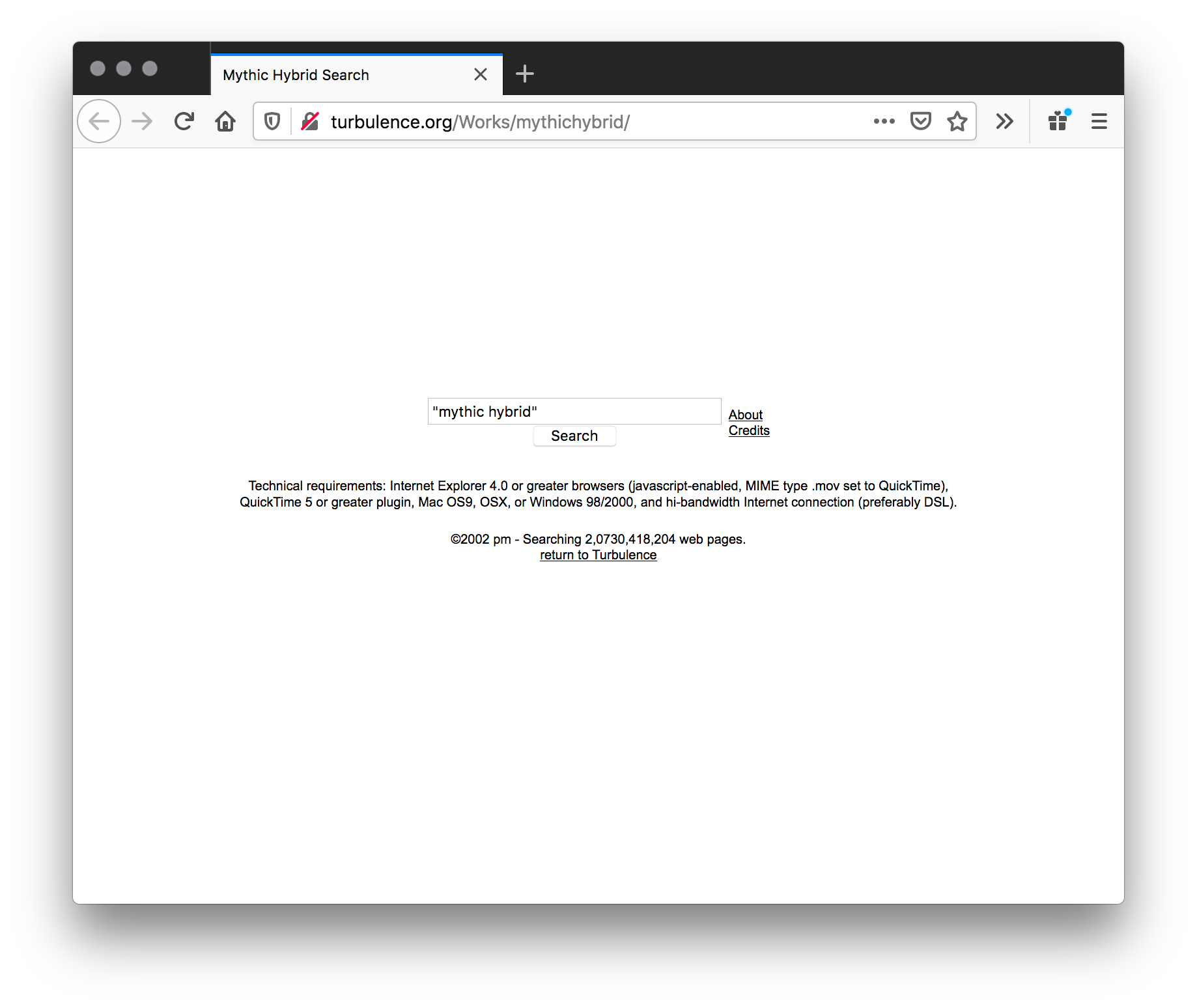
Screenshot, 2020, Firefox v76.0.1 on Mac OS 10.13.3; http://turbulence.org/Works/mythichybrid/
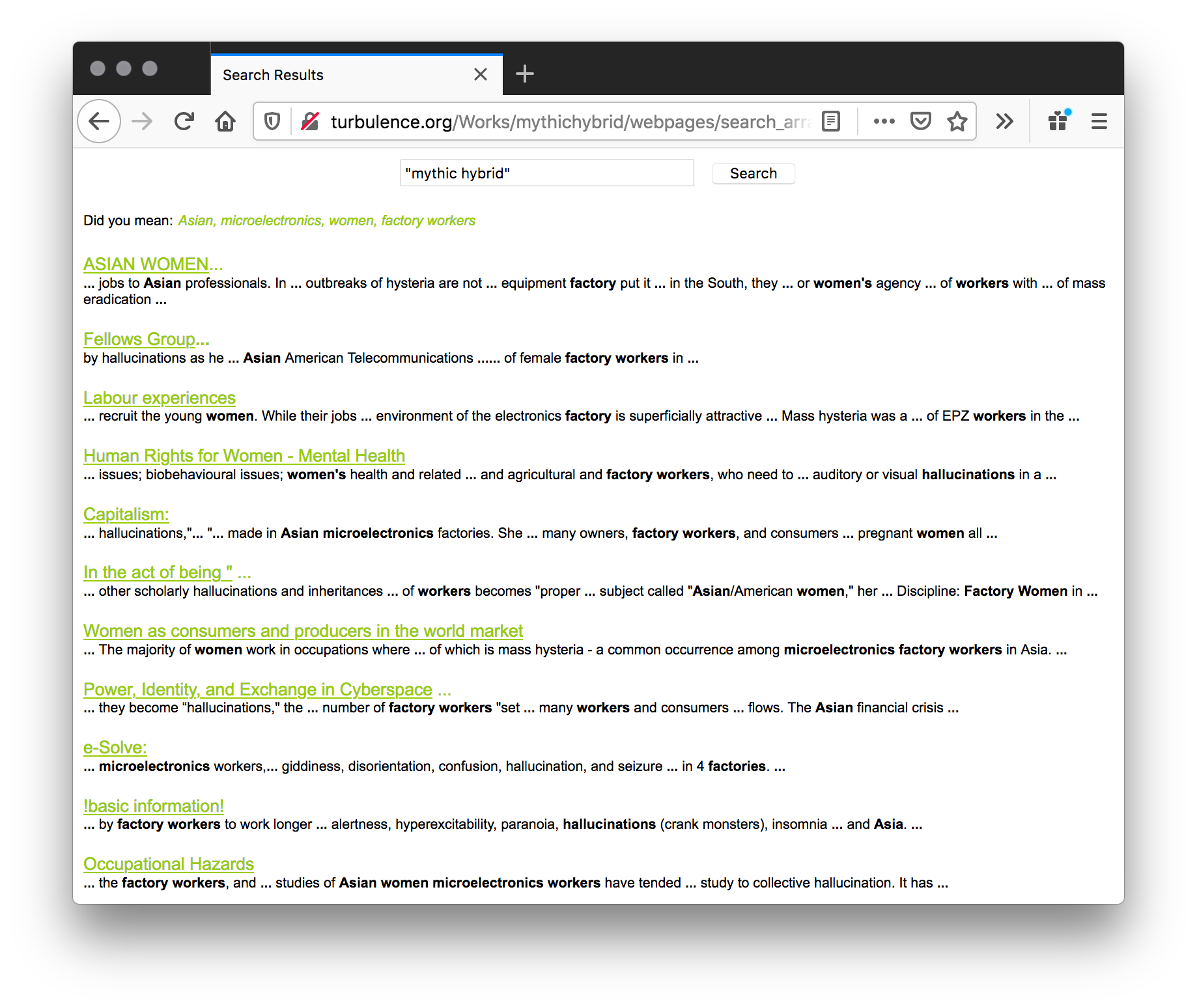
Screenshot, 2020, Firefox v76.0.1 on Mac OS 10.13.3; http://turbulence.org/Works/mythichybrid/webpages/search_array.html
Mythic Hybrid is inspired by my interest in women working in microelectronics factories. Upon my research, I came across reports of collective hallucination and mass hysteria occurring among women factory workers. In 2001, I traveled to India to continue my research and investigate these reports. What I found along the way was contrary to expectations—a group of sane, rational women with identities constructed by a set of complex social and psychological factors.
This project uses the term “mythic hybrid” in a critical way. It was coined by Donna Haraway over 10 years ago in her “Cyborg Manifesto,” (to invoke an imagination of fictions and feminisms that dreams “not of a common language, but of a powerful infidel heteroglossia.” Since then, how far has cyberfeminism taken us?
2002, Prema Murthy, http://www.turbulence.org/Works/mythichybrid
http://turbulence.org/Works/mythichybrid/
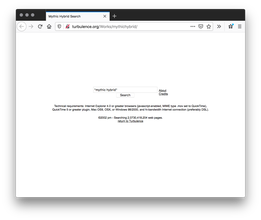
Screenshot, 2020, Firefox v76.0.1 on Mac OS 10.13.3; http://turbulence.org/Works/mythichybrid/

Screenshot, 2020, Firefox v76.0.1 on Mac OS 10.13.3; http://turbulence.org/Works/mythichybrid/webpages/search_array.html
(250)
2002
World Indigenous Register
Cheryl L’Hirondelle
nehiyaw? dene? celt? norman? sami? anishnawbe?
world indigenous register will comprise all people who know their tribal ancestry. this register is not concerned with current world governments, their rules and regulations, nor will this register require any government sanctioned proof as your word is honored here. all i ask is that you “know who you are and from whence you came.” if you would like to be included on this register, please feel free to contact me so i may let you know when this site will be fully interactive and operational. in the spirit of our ancestors …
2002, Cheryl L’Hirondelle, https://web.archive.org/web/20030417155325/http://ndnnrkey.net/indigenous/index.html
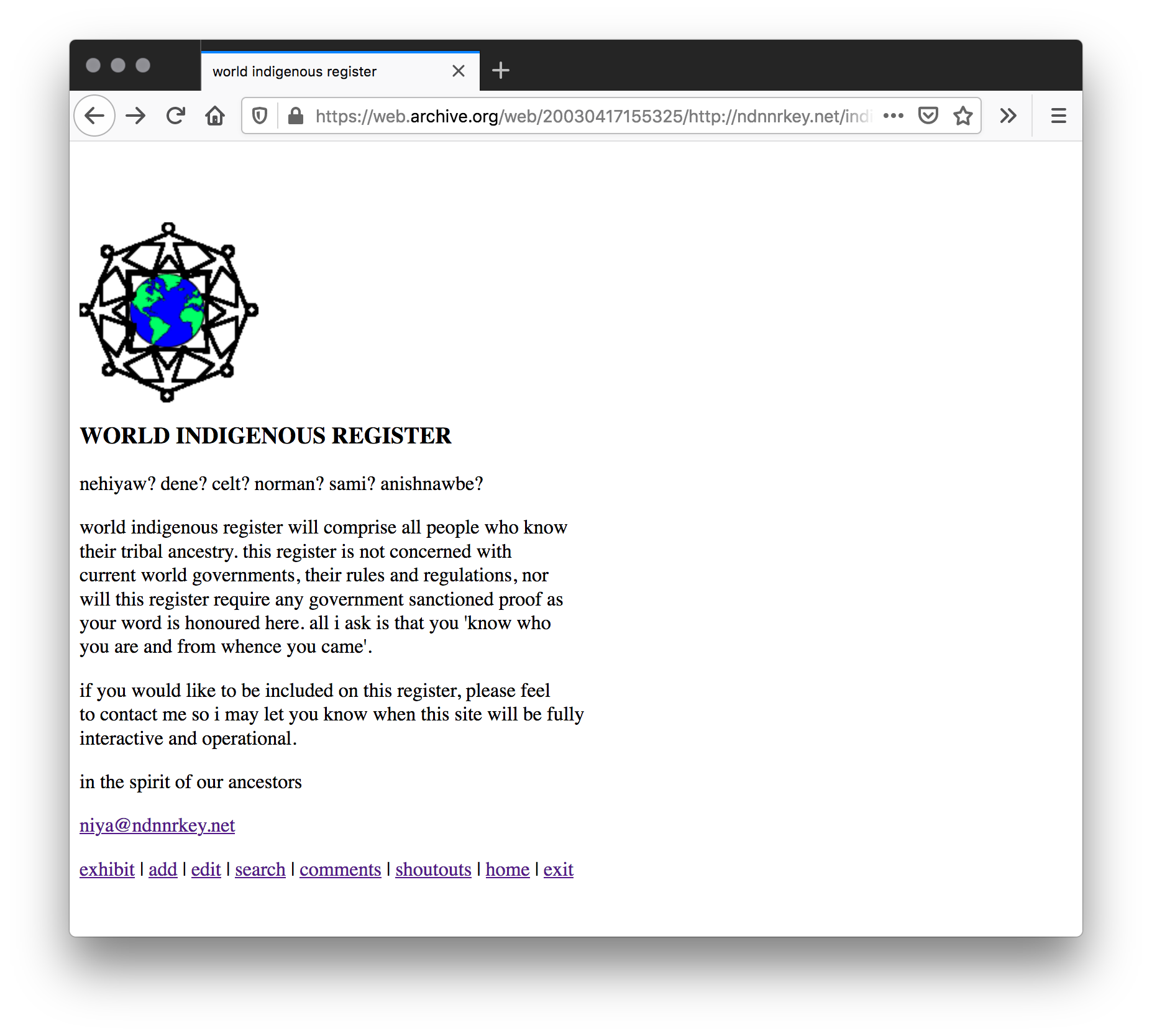
Screenshot, 2020, Firefox v76.0.1 on Mac OS 10.13.3; https://web.archive.org/web/20030417155325/http://ndnnrkey.net/indigenous/index.html
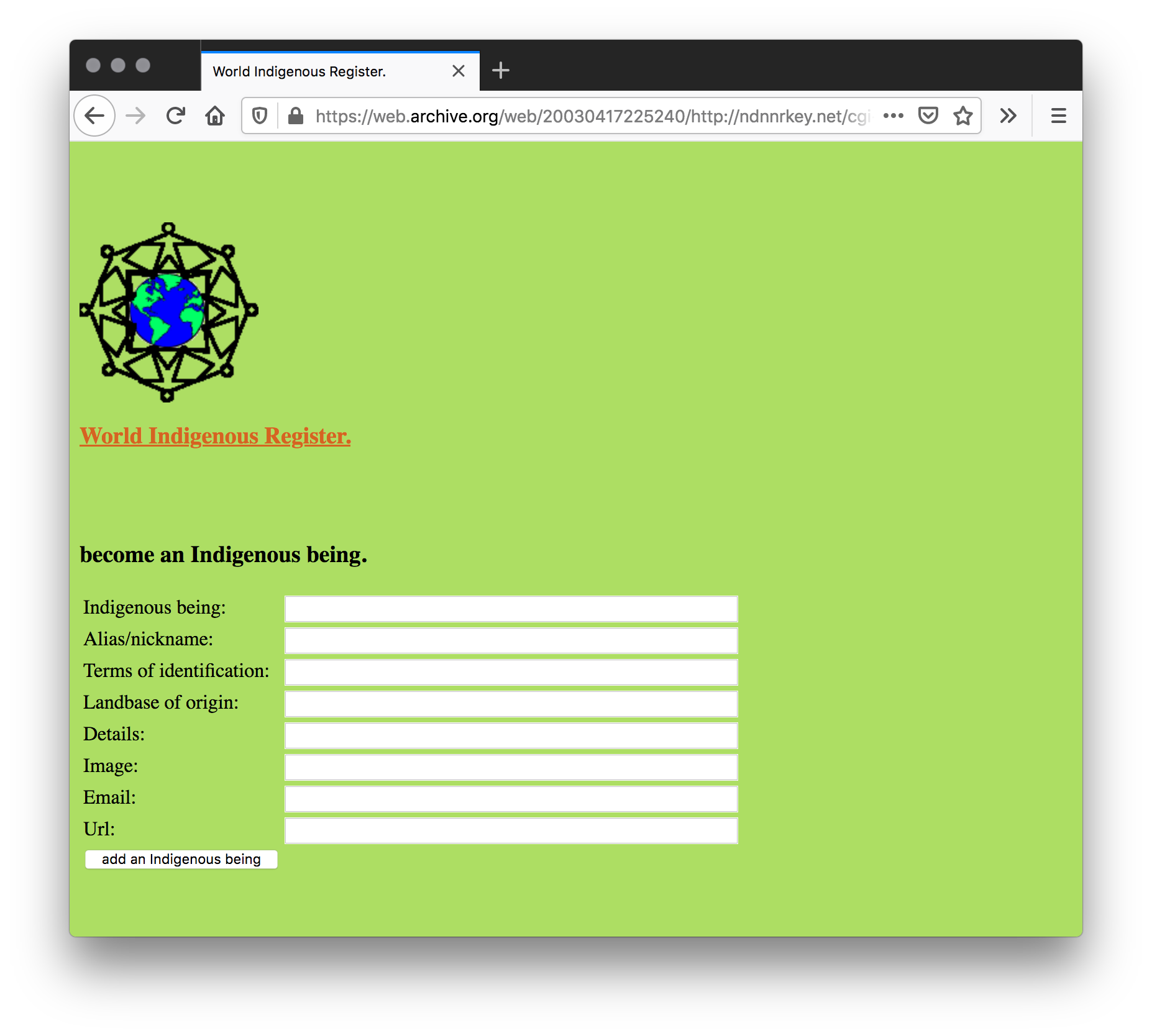
Screenshot, 2020, Firefox v76.0.1 on Mac OS 10.13.3; https://web.archive.org/web/20030417225240/http://ndnnrkey.net/cgi-bin/indigenous/admin.pl?action=add_form
nehiyaw? dene? celt? norman? sami? anishnawbe?
world indigenous register will comprise all people who know their tribal ancestry. this register is not concerned with current world governments, their rules and regulations, nor will this register require any government sanctioned proof as your word is honored here. all i ask is that you “know who you are and from whence you came.” if you would like to be included on this register, please feel free to contact me so i may let you know when this site will be fully interactive and operational. in the spirit of our ancestors …
2002, Cheryl L’Hirondelle, https://web.archive.org/web/20030417155325/http://ndnnrkey.net/indigenous/index.html
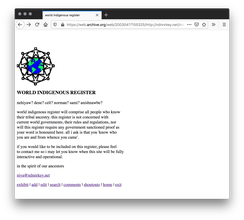
Screenshot, 2020, Firefox v76.0.1 on Mac OS 10.13.3; https://web.archive.org/web/20030417155325/http://ndnnrkey.net/indigenous/index.html
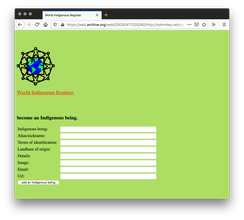
Screenshot, 2020, Firefox v76.0.1 on Mac OS 10.13.3; https://web.archive.org/web/20030417225240/http://ndnnrkey.net/cgi-bin/indigenous/admin.pl?action=add_form
(251)
2002
Cyberquake: Haraway’s Manifesto
Zoë Sofoulis
The overused term “ground-breaking” always invokes for me images of pickaxes and bulldozers churning up undeveloped land. This is not quite the right word for Donna Haraway’s “A Manifesto for Cyborgs” (1985), which behaved more like the seismic center of an earthquake that jolted many out of their categorical certainties as it shifted the terrain of debate about culture and identity in the late 20th century. This chapter is concerned with the earthquake effects of the Cyborg Manifesto in academia and cyberculture more generally. I cannot claim any overarching objectivity: I was a student of Haraway’s during the 1980s, and have been familiar with the essay from its pre-history to its breakthrough with the notion of the cyborg, following its career through various published, republished, and re-edited versions, not to mention spin-off interviews and elaborations. Rather, I practice what Haraway calls a “situated knowledge”: partial, with inevitable blind spots, and very much part of the field it examines …
2002, Zoë Sofoulis, in Prefiguring Cyberculture: An Intellectual History, eds. Darren Tofts, Annemarie Jonson, and Alessio Cavallaro (Cambridge, MA: MIT Press, 2002), pp. 84–103; excerpt p. 84; referred by Virginia Barratt and Francesca da Rimini (VNS Matrix)
https://monoskop.org/images/c/c4/Sofoulis_Zoe_2002_Cyberquake_Haraways_Manifesto.pdf https://www.are.na/block/8512810
The overused term “ground-breaking” always invokes for me images of pickaxes and bulldozers churning up undeveloped land. This is not quite the right word for Donna Haraway’s “A Manifesto for Cyborgs” (1985), which behaved more like the seismic center of an earthquake that jolted many out of their categorical certainties as it shifted the terrain of debate about culture and identity in the late 20th century. This chapter is concerned with the earthquake effects of the Cyborg Manifesto in academia and cyberculture more generally. I cannot claim any overarching objectivity: I was a student of Haraway’s during the 1980s, and have been familiar with the essay from its pre-history to its breakthrough with the notion of the cyborg, following its career through various published, republished, and re-edited versions, not to mention spin-off interviews and elaborations. Rather, I practice what Haraway calls a “situated knowledge”: partial, with inevitable blind spots, and very much part of the field it examines …
2002, Zoë Sofoulis, in Prefiguring Cyberculture: An Intellectual History, eds. Darren Tofts, Annemarie Jonson, and Alessio Cavallaro (Cambridge, MA: MIT Press, 2002), pp. 84–103; excerpt p. 84; referred by Virginia Barratt and Francesca da Rimini (VNS Matrix)
https://monoskop.org/images/c/c4/Sofoulis_Zoe_2002_Cyberquake_Haraways_Manifesto.pdf https://www.are.na/block/8512810
(252)
2002
Undercurrents: A Dialogue by María Fernández, Irina Aristarkhova and Coco Fusco
Irina Aristarkhova, María Fernández and Coco Fusco
In the current global political climate, examinations of dominant notions of race and the multifaceted aspects of racism are pressing. Instead of encouraging reflection on these issues, many cyberfeminists suppress it. In the rare cyberfeminist considerations of racism, there seems to be a confusion between racism as a social problem, and an individual’s voluntary identification with a specific group. Those wishing to discuss racism are accused of essentialism and derided for their ignorance of recent theoretical and scientific developments. The centuries-old realization (by those at the receiving end) that race is a construction is touted as a newly discovered truth. Because “race does not exist” racism is cast as an imaginary problem in the mind of naive, retrogressive individuals. Simultaneously, the image of “the Third World Woman” as poorly educated, bound by repressive cultural traditions and by the body, living and thinking in a time anterior to their first world counterparts prevails. Whoever she is, this woman has no place in cyberfeminism.
2002, María Fernández, Irina Aristarkhova, and Coco Fusco, Fine Art Forum 16, no. 8 (2002), http://www-personal.umich.edu/~airina/texts/undercurrents_faf.pdf; excerpt from María Fernández; submitted by María Fernández
https://www.academia.edu/38381172/Undercurrents_a_dialogue_by_Maria_Fernandez_Irina_Aristarkhova_and_Coco_Fusco https://web.archive.org/web/20061008031138/www.fineartforum.org/Backissues/Vol_16/faf_v16_n08/reviews/feature.html
In the current global political climate, examinations of dominant notions of race and the multifaceted aspects of racism are pressing. Instead of encouraging reflection on these issues, many cyberfeminists suppress it. In the rare cyberfeminist considerations of racism, there seems to be a confusion between racism as a social problem, and an individual’s voluntary identification with a specific group. Those wishing to discuss racism are accused of essentialism and derided for their ignorance of recent theoretical and scientific developments. The centuries-old realization (by those at the receiving end) that race is a construction is touted as a newly discovered truth. Because “race does not exist” racism is cast as an imaginary problem in the mind of naive, retrogressive individuals. Simultaneously, the image of “the Third World Woman” as poorly educated, bound by repressive cultural traditions and by the body, living and thinking in a time anterior to their first world counterparts prevails. Whoever she is, this woman has no place in cyberfeminism.
2002, María Fernández, Irina Aristarkhova, and Coco Fusco, Fine Art Forum 16, no. 8 (2002), http://www-personal.umich.edu/~airina/texts/undercurrents_faf.pdf; excerpt from María Fernández; submitted by María Fernández
https://www.academia.edu/38381172/Undercurrents_a_dialogue_by_Maria_Fernandez_Irina_Aristarkhova_and_Coco_Fusco https://web.archive.org/web/20061008031138/www.fineartforum.org/Backissues/Vol_16/faf_v16_n08/reviews/feature.html
(253)
2002
Hospitality-Chora-Matrix-Cyberspace
Irina Aristarkhova
The notion of matrix is used in association with the term pregnancy, with years becoming more and more elevated to the realm of Symbolic, though Lacan continues to exploit it as an engendering and foundational metaphor. Lacanian usage of Matrix is linked to the general desire to self-production, to engendering oneself by oneself alone, giving a “true” birth out of life in the Platonic cave. Barzilai concludes that in this process “matrix disappears from the world of mothers and enters into that of mirrors and signifiers.”
In recent years the notion of the Matrix has become dominant in figurations of cyberspace. It seems as if the most desirable, the most contemporary and fitting equation. I would argue that the challenge today is to reintroduce material as an embodied encounter with difference, and not a metaphorical one. We imagine cyberspace as a collection of home-sites, matrices, shelters that are protected by the keys—passwords.
2002, Irina Aristarkhova, in “THE BODY / LE CORPS / DER KÖRPER / TELO,” ed. Marina Gržinić Mauhler, special issue, Filosofsky Vestnik 23, no. 2, (2002): pp. 27–43; excerpt p. 37
https://ojs.zrc-sazu.si/filozofski-vestnik/article/view/3442
The notion of matrix is used in association with the term pregnancy, with years becoming more and more elevated to the realm of Symbolic, though Lacan continues to exploit it as an engendering and foundational metaphor. Lacanian usage of Matrix is linked to the general desire to self-production, to engendering oneself by oneself alone, giving a “true” birth out of life in the Platonic cave. Barzilai concludes that in this process “matrix disappears from the world of mothers and enters into that of mirrors and signifiers.”
In recent years the notion of the Matrix has become dominant in figurations of cyberspace. It seems as if the most desirable, the most contemporary and fitting equation. I would argue that the challenge today is to reintroduce material as an embodied encounter with difference, and not a metaphorical one. We imagine cyberspace as a collection of home-sites, matrices, shelters that are protected by the keys—passwords.
2002, Irina Aristarkhova, in “THE BODY / LE CORPS / DER KÖRPER / TELO,” ed. Marina Gržinić Mauhler, special issue, Filosofsky Vestnik 23, no. 2, (2002): pp. 27–43; excerpt p. 37
https://ojs.zrc-sazu.si/filozofski-vestnik/article/view/3442
(254)
2002
Thanksgiving Address: Greetings to the Technological World
Jason Edward Lewis, Skawennati
“We don’t even pray over our food. We just eat it like it is ours. That’s greedy. It is a gift.” —Arvol Looking Horse
“When one recites the Thanksgiving Address, the natural world is thanked.” —Some Old Mohawk
The traditional Iroquois Thanksgiving Address is a beautiful piece of oration. Handed down from time immemorial, the list of those greeted and thanked includes the earth, the water, the thunder, the medicine herbs and more. We felt it was about time someone added a few lines so that it includes items of our technological world that we are also thankful for. In our digital video triptych, we sit before a feast of turkey, yams, squash, stuffing and cranberries and, following the form of the traditional Thanksgiving Address, we thank the Creator for some modern amenities.
2002, Jason Edward Lewis and Skawennati, https://www.obxlabs.net/shows/thanksgivingaddress/
“We don’t even pray over our food. We just eat it like it is ours. That’s greedy. It is a gift.” —Arvol Looking Horse
“When one recites the Thanksgiving Address, the natural world is thanked.” —Some Old Mohawk
The traditional Iroquois Thanksgiving Address is a beautiful piece of oration. Handed down from time immemorial, the list of those greeted and thanked includes the earth, the water, the thunder, the medicine herbs and more. We felt it was about time someone added a few lines so that it includes items of our technological world that we are also thankful for. In our digital video triptych, we sit before a feast of turkey, yams, squash, stuffing and cranberries and, following the form of the traditional Thanksgiving Address, we thank the Creator for some modern amenities.
2002, Jason Edward Lewis and Skawennati, https://www.obxlabs.net/shows/thanksgivingaddress/
(255)
2002
Runway Journal
Mariam Ella Arcilla
Established in 2002, Runway Journal is an open-access digital publishing platform that commissions, cultivates and preserves experimental practices. As one of Australia’s longest-running artist-run initiatives, Runway is committed to advancing the field of experimental digital art and fostering the practices of emerging and underrepresented voices. Since its inception, the journal has published over 1100 critical and artistic works that engage with current threads of Australian and global contemporary art.
Expansive and genre-defying, Runway’s commissioning inventory includes writers, artists, cultural workers, designers, academics, coders, art historians, and community collectives. Powered by a voluntary-run board of artists and arts workers based across Australia, Runway’s carves out an independent, artist-led space for people to develop, investigate and present ideas that move the world forward. In 2023, Runway is currently managed by a 13-member board with dedicated roles across development, digital production, design, strategy, editorial, communications, and engagement.
Runway began as a hardcopy magazine publication and transitioned in 2012 to a free online platform. This decision enabled the organisation to offer a sustainable and accessible avenue to increase reader engagement and diversify content, with a focus on digital and experimental practices. Alongside our programs, Runway also fosters strategic partnerships with organisations that align with our mission to expand digitally-driven production within the arts and culture landscape.
2002–present, Mariam Ella Arcilla, https://runway.org.au/; submitted by Mariam Ella Arcilla
Established in 2002, Runway Journal is an open-access digital publishing platform that commissions, cultivates and preserves experimental practices. As one of Australia’s longest-running artist-run initiatives, Runway is committed to advancing the field of experimental digital art and fostering the practices of emerging and underrepresented voices. Since its inception, the journal has published over 1100 critical and artistic works that engage with current threads of Australian and global contemporary art.
Expansive and genre-defying, Runway’s commissioning inventory includes writers, artists, cultural workers, designers, academics, coders, art historians, and community collectives. Powered by a voluntary-run board of artists and arts workers based across Australia, Runway’s carves out an independent, artist-led space for people to develop, investigate and present ideas that move the world forward. In 2023, Runway is currently managed by a 13-member board with dedicated roles across development, digital production, design, strategy, editorial, communications, and engagement.
Runway began as a hardcopy magazine publication and transitioned in 2012 to a free online platform. This decision enabled the organisation to offer a sustainable and accessible avenue to increase reader engagement and diversify content, with a focus on digital and experimental practices. Alongside our programs, Runway also fosters strategic partnerships with organisations that align with our mission to expand digitally-driven production within the arts and culture landscape.
2002–present, Mariam Ella Arcilla, https://runway.org.au/; submitted by Mariam Ella Arcilla
(256)
2003
Cyberfeminism: Networking on the Net
Amy Richards, Marianne Schnall
An initial feminist Internet aim was simply to get women on-line. In 1995, only 15 percent of Internet users were women, but by early 2000, women comprised 50 percent of users (a 32 percent increase since 1999). Yet patriarchy has never been absent. Men controlled the content, men earned the profit. Similarly, a gender gap emerged in how women and men accessed the Internet: men surfed, hopping from site to site; women went directly to certain sites or searched for information on specific topics. Making the Internet more women-friendly required easing the process of associating women with each other and the information they sought. Once “arrived,” they’d connect with women’s organizations, announcements, and resources, as well as with each other. Linking sites through hyperlinks (plus web rings, list serves, etc.) has become the ultimate in virtual sisterhood: we can steer one another to like-minded sites and organizations in order to better educate ourselves. The nature of the Internet makes being on-line a natural for women: expressing ourselves through words—as we do now in e-mail, list serves, or websites—is an extension of our own tendencies to communicate.
2003, Amy Richards and Marianne Schnall, in Sisterhood Is Forever: The Women’s Anthology for a New Millennium (New York: Washington Square Press, 2003); excerpt from Amy Richards and Marianne Schnall, “Cyberfeminism: Networking on the Net,” feminist.com, https://www.feminist.com/resources/artspeech/genwom/cyberfeminism.html
https://www.are.na/block/7588823
An initial feminist Internet aim was simply to get women on-line. In 1995, only 15 percent of Internet users were women, but by early 2000, women comprised 50 percent of users (a 32 percent increase since 1999). Yet patriarchy has never been absent. Men controlled the content, men earned the profit. Similarly, a gender gap emerged in how women and men accessed the Internet: men surfed, hopping from site to site; women went directly to certain sites or searched for information on specific topics. Making the Internet more women-friendly required easing the process of associating women with each other and the information they sought. Once “arrived,” they’d connect with women’s organizations, announcements, and resources, as well as with each other. Linking sites through hyperlinks (plus web rings, list serves, etc.) has become the ultimate in virtual sisterhood: we can steer one another to like-minded sites and organizations in order to better educate ourselves. The nature of the Internet makes being on-line a natural for women: expressing ourselves through words—as we do now in e-mail, list serves, or websites—is an extension of our own tendencies to communicate.
2003, Amy Richards and Marianne Schnall, in Sisterhood Is Forever: The Women’s Anthology for a New Millennium (New York: Washington Square Press, 2003); excerpt from Amy Richards and Marianne Schnall, “Cyberfeminism: Networking on the Net,” feminist.com, https://www.feminist.com/resources/artspeech/genwom/cyberfeminism.html
https://www.are.na/block/7588823
(257)
2003
Cyberfeminism and Artificial Life
Sarah Kember
To the distant gaze of cyberfeminism, artificial life seems to retreat from this precarious boundary position and engage in a form of renaturalisation by creating artificial entities in artificial worlds governed solely by Darwinian evolutionary principles. In the convergence between biology and computer science, it is the biology which speaks more loudly, and seems to speak more clearly to thefeminist. From a distance, Artificial Life certainly looks like “sociobiology in computational clothing” and Alison Adam was right to point out the dangers of a discourse which subsumes cultural into biological explanations of life. But the challenge for cyberfeminism—which, like other aspects of feminism, has had to interrogate its own relation to biological discourse through the problems of universalism and essentialism—is to recognise the plurality of positions which simultaneously undermine and strengthen not just its own case but that of its supposed adversary. There is no “biology” any more than there is a homogenous “feminism.”
2003, Sarah Kember (London: Routledge, 2003); excerpt p. viii
https://www.are.na/block/7723508
To the distant gaze of cyberfeminism, artificial life seems to retreat from this precarious boundary position and engage in a form of renaturalisation by creating artificial entities in artificial worlds governed solely by Darwinian evolutionary principles. In the convergence between biology and computer science, it is the biology which speaks more loudly, and seems to speak more clearly to thefeminist. From a distance, Artificial Life certainly looks like “sociobiology in computational clothing” and Alison Adam was right to point out the dangers of a discourse which subsumes cultural into biological explanations of life. But the challenge for cyberfeminism—which, like other aspects of feminism, has had to interrogate its own relation to biological discourse through the problems of universalism and essentialism—is to recognise the plurality of positions which simultaneously undermine and strengthen not just its own case but that of its supposed adversary. There is no “biology” any more than there is a homogenous “feminism.”
2003, Sarah Kember (London: Routledge, 2003); excerpt p. viii
https://www.are.na/block/7723508
(258)
2003
Hacking into Hacking: Gender and the Hacker Phenomenon
Alison Adam
Women hackers, and whether there are any, has proved to be an endlessly fascinating topic. This paper explores the gender dimensions of hacking in terms of the male domination of hacking, the presence or absence of women hackers, the influence of the frontier metaphor and especially frontier masculinity. Central tenets of the “hacker ethic” are examined including whether hacker communities are more egalitarian than other communities, the equal opportunities, freedom of information and work ethics of the hacker ethic. Whilst these are all problematic in gender terms there are hints that a female version of the hacker ethic is emerging amongst women hackers which is more explicitly political in motivation.
2003, Alison Adam, in ACM SIGCAS Computers and Society 33, no. 4 (December 2003): pp. 3–5; excerpt p. 3
https://doi.org/10.1145/968358.968360
Women hackers, and whether there are any, has proved to be an endlessly fascinating topic. This paper explores the gender dimensions of hacking in terms of the male domination of hacking, the presence or absence of women hackers, the influence of the frontier metaphor and especially frontier masculinity. Central tenets of the “hacker ethic” are examined including whether hacker communities are more egalitarian than other communities, the equal opportunities, freedom of information and work ethics of the hacker ethic. Whilst these are all problematic in gender terms there are hints that a female version of the hacker ethic is emerging amongst women hackers which is more explicitly political in motivation.
2003, Alison Adam, in ACM SIGCAS Computers and Society 33, no. 4 (December 2003): pp. 3–5; excerpt p. 3
https://doi.org/10.1145/968358.968360
(259)
2003
Women, Art, Technology
Judy Malloy
You/I, beholding or assuming the shape of its inhabiting minotaur, holding and following multiple threads, are negotiating this information maze that art has become. We navigate this volume knowing that at the turn of the century, many paths emerge from the matrix where art, technology, and gender intertwine. We (reader, artist, viewer) cannot expect to remain passive, either in experiencing and immersing ourselves in new-media artworks or in formulating answers and questions about the intersection of new media and gender at the turn of the century—questions such as the dichotomy between the evidence set forth in this book of a strong, influential, central female presence in the field of new media and the continuing male domination of the computer industry. By its weight, this book makes clear that women’s voices are now integral to new-media art practice. Therefore, this book does not need to reinforce the stereotype that women are not interested in technology or to chronicle the changing ratio of female to male voices as the online environment evolves.
2003, Judy Malloy, ed. (Cambridge, MA: MIT Press, 2003); excerpt from Judy Malloy, introduction to Malloy, Women, Art, Technology, pp. xv–xvi
Editor’s Note: When I first began this project in 2018, Judy Malloy spoke with me at length about this index and her experiences with her publication Women, Art, Technology. It was here she introduced me to the terms “yack” and “hack,” referring to theory and practice respectively, and how the entanglement of both was necessary in the discussion of technology studies. —MS
https://mitpress.mit.edu/books/women-art-and-technology
You/I, beholding or assuming the shape of its inhabiting minotaur, holding and following multiple threads, are negotiating this information maze that art has become. We navigate this volume knowing that at the turn of the century, many paths emerge from the matrix where art, technology, and gender intertwine. We (reader, artist, viewer) cannot expect to remain passive, either in experiencing and immersing ourselves in new-media artworks or in formulating answers and questions about the intersection of new media and gender at the turn of the century—questions such as the dichotomy between the evidence set forth in this book of a strong, influential, central female presence in the field of new media and the continuing male domination of the computer industry. By its weight, this book makes clear that women’s voices are now integral to new-media art practice. Therefore, this book does not need to reinforce the stereotype that women are not interested in technology or to chronicle the changing ratio of female to male voices as the online environment evolves.
2003, Judy Malloy, ed. (Cambridge, MA: MIT Press, 2003); excerpt from Judy Malloy, introduction to Malloy, Women, Art, Technology, pp. xv–xvi
Editor’s Note: When I first began this project in 2018, Judy Malloy spoke with me at length about this index and her experiences with her publication Women, Art, Technology. It was here she introduced me to the terms “yack” and “hack,” referring to theory and practice respectively, and how the entanglement of both was necessary in the discussion of technology studies. —MS
https://mitpress.mit.edu/books/women-art-and-technology
(260)
2003
Racism, Technology and the Limits of Western Knowledge
Michelle M. Wright
In [Anthony Walton’s] discussion of technology versus African-Americans, he ignores the technological innovations created by the latter, Africans, and the rest of the world. This leads the reader to assume that no black (without Western tutelage) has played a role in the history of technology except as victim or passive recipient. The first alphabets; the concept of zero; gynecology; veterinary medicine; the 365 day calendar (anticipating its “discovery” in the west by three thousand years); elements of geometry; Cesarean section; iron and copper smelting—all of these and far more were accomplished outside the West; indeed, before the West had developed from roaming tribes into permanent organized settlements. This is not to claim, therefore, that African civilizations are obviously superior: Only that the rather large and influential advancements they provided have been denied and usurped by late nineteenth and early twentieth century historians such as Arnold Toynbee, who famously declared that, outside of Europe, no other continent had contributed to world civilization. […] In our representation of the technological revolution, we construct the same mythological doctrine that still plagues public school and mass media representation of its American history by presenting it as almost wholly white and male.
2002, Michelle M. Wright, in Domain Errors! Cyberfeminist Practices, eds. Maria Fernández, Faith Wilding, and Michelle Wright (New York: Autonomedia, 2002), pp. 45–62; excerpt pp. 48
https://www.are.na/block/7812126
In [Anthony Walton’s] discussion of technology versus African-Americans, he ignores the technological innovations created by the latter, Africans, and the rest of the world. This leads the reader to assume that no black (without Western tutelage) has played a role in the history of technology except as victim or passive recipient. The first alphabets; the concept of zero; gynecology; veterinary medicine; the 365 day calendar (anticipating its “discovery” in the west by three thousand years); elements of geometry; Cesarean section; iron and copper smelting—all of these and far more were accomplished outside the West; indeed, before the West had developed from roaming tribes into permanent organized settlements. This is not to claim, therefore, that African civilizations are obviously superior: Only that the rather large and influential advancements they provided have been denied and usurped by late nineteenth and early twentieth century historians such as Arnold Toynbee, who famously declared that, outside of Europe, no other continent had contributed to world civilization. […] In our representation of the technological revolution, we construct the same mythological doctrine that still plagues public school and mass media representation of its American history by presenting it as almost wholly white and male.
2002, Michelle M. Wright, in Domain Errors! Cyberfeminist Practices, eds. Maria Fernández, Faith Wilding, and Michelle Wright (New York: Autonomedia, 2002), pp. 45–62; excerpt pp. 48
https://www.are.na/block/7812126
(261)
2003
Asian America.Net: Ethnicity, Nationalism, and Cyberspace
Rachel C. Lee, Sau-ling Cynthia Wong
Until the closing years of the twentieth century, both Sau-ling Cynthia Wong and I had never considered ourselves experts or even players in the field of Internet technology. Comfortable in our back-row stadium seats, we were, if not completely on the nether side of the digital divide, then teetering precariously at its edge. And yet, our everyday lives apprised us to the unexamined positions we occupied within the digital ballpark. […] We both felt oceans apart from this second, digital Gold Rush and integrally linked to it as scholars and denizens of the new Asian America […] The oceans that separated us in this case were not the vast blue sea coupled with immigration restrictions and social constraints on our female mobility, but rather the sense that Asian American “panethnicity” and coalitional politics were not allegiances shared by the new Asian immigrant families. […] This volume, in other words, makes manifest another kind of Asian American cybercollectivity distinct from the one most familiar to advertisers […] but comprised of Netizens oriented toward examining and theorizing both the limit and potential for political resistance and social struggle on the net.
2003, Rachel C. Lee and Sau-ling Cythia Wong, eds. (New York: Routledge, 2003); excerpt from Rachel C. Lee, preface to Lee and Wong, Asian America.Net, pp. vii–ix
Contributors include Rachel C. Lee, Sau-ling Cynthia Wong, Wendy Hui Kyong Chun, Jerry Kang, Kim-An Lieberman, Vinay Lal, Yuan Shu, Emily Noelle Ignacio, Aeju Kim, John Cheng, Karen Har-yen Chow, Pamela Thoma, Vernadette V. Gonzalez, Robyn Magalit Rodriguez, Linta Verghese, Jeffrey A. Ow, Thuy Linh Nguyen Tu, and Mimi Nguyen.
Until the closing years of the twentieth century, both Sau-ling Cynthia Wong and I had never considered ourselves experts or even players in the field of Internet technology. Comfortable in our back-row stadium seats, we were, if not completely on the nether side of the digital divide, then teetering precariously at its edge. And yet, our everyday lives apprised us to the unexamined positions we occupied within the digital ballpark. […] We both felt oceans apart from this second, digital Gold Rush and integrally linked to it as scholars and denizens of the new Asian America […] The oceans that separated us in this case were not the vast blue sea coupled with immigration restrictions and social constraints on our female mobility, but rather the sense that Asian American “panethnicity” and coalitional politics were not allegiances shared by the new Asian immigrant families. […] This volume, in other words, makes manifest another kind of Asian American cybercollectivity distinct from the one most familiar to advertisers […] but comprised of Netizens oriented toward examining and theorizing both the limit and potential for political resistance and social struggle on the net.
2003, Rachel C. Lee and Sau-ling Cythia Wong, eds. (New York: Routledge, 2003); excerpt from Rachel C. Lee, preface to Lee and Wong, Asian America.Net, pp. vii–ix
Contributors include Rachel C. Lee, Sau-ling Cynthia Wong, Wendy Hui Kyong Chun, Jerry Kang, Kim-An Lieberman, Vinay Lal, Yuan Shu, Emily Noelle Ignacio, Aeju Kim, John Cheng, Karen Har-yen Chow, Pamela Thoma, Vernadette V. Gonzalez, Robyn Magalit Rodriguez, Linta Verghese, Jeffrey A. Ow, Thuy Linh Nguyen Tu, and Mimi Nguyen.
(262)
2003
Equipo Latinoamericano de Justicia y Género (ELA) [Latin American Justice and Gender Team]
Sofia Harari, Gabriela Pastorino, Laura Pautassi
Nuestra misión es alcanzar la equidad de género a partir de acciones de incidencia, trabajo en redes y el desarrollo de capacidades de actores políticos y sociales, con el fin de mejorar la situación social, política y económica de las mujeres. Fundada en mayo de 2003 en la Ciudad de Buenos Aires, ELA está integrada por un equipo interdisciplinario de especialistas con trayectoria en el Estado, las Universidades y Centros de Investigación, Organismos Internacionales, práctica jurídica y ONG.
Our mission is to achieve gender equality through advocacy, networking and capacity building for political and social actors, in order to improve the social, political and economic situation of women. Founded in May 2003 in the City of Buenos Aires, ELA is made up of an interdisciplinary team of specialists with experience in the State, Universities and Research Centers, International Organizations, legal practice and NGOs.
2003, Sofia Harari, Gabriela Pastorino, and Laura Pautassi, https://www.ela.org.ar/a/APP187/48/90
Argentina
Nuestra misión es alcanzar la equidad de género a partir de acciones de incidencia, trabajo en redes y el desarrollo de capacidades de actores políticos y sociales, con el fin de mejorar la situación social, política y económica de las mujeres. Fundada en mayo de 2003 en la Ciudad de Buenos Aires, ELA está integrada por un equipo interdisciplinario de especialistas con trayectoria en el Estado, las Universidades y Centros de Investigación, Organismos Internacionales, práctica jurídica y ONG.
Our mission is to achieve gender equality through advocacy, networking and capacity building for political and social actors, in order to improve the social, political and economic situation of women. Founded in May 2003 in the City of Buenos Aires, ELA is made up of an interdisciplinary team of specialists with experience in the State, Universities and Research Centers, International Organizations, legal practice and NGOs.
2003, Sofia Harari, Gabriela Pastorino, and Laura Pautassi, https://www.ela.org.ar/a/APP187/48/90
Argentina
(263)
2003
Fundación Karisma
Somos una organización de la sociedad civil que busca responder a las amenazas y oportunidades que plantea la “tecnología para el desarrollo” al ejercicio de los derechos humanos. Desarrollamos nuestras actividades desde perspectivas que promuevan la libertad de expresión y las equidades de género y social. Fundada en 2003, Karisma se posiciona hoy como una de las principales organizaciones de la sociedad civil latinoamericana que trabaja en la promoción de los derechos humanos en el mundo digital.
We are a civil society organization that seeks to respond to the threats and opportunities posed by “technology for development” to the exercise of human rights. We develop our activities from perspectives that promote freedom of expression and gender and social equity. Founded in 2003, Karisma is now positioned as one of the main Latin American civil society organizations that works to promote human rights in the digital world.
2003, https://www.karisma.org.co
Colombia
Somos una organización de la sociedad civil que busca responder a las amenazas y oportunidades que plantea la “tecnología para el desarrollo” al ejercicio de los derechos humanos. Desarrollamos nuestras actividades desde perspectivas que promuevan la libertad de expresión y las equidades de género y social. Fundada en 2003, Karisma se posiciona hoy como una de las principales organizaciones de la sociedad civil latinoamericana que trabaja en la promoción de los derechos humanos en el mundo digital.
We are a civil society organization that seeks to respond to the threats and opportunities posed by “technology for development” to the exercise of human rights. We develop our activities from perspectives that promote freedom of expression and gender and social equity. Founded in 2003, Karisma is now positioned as one of the main Latin American civil society organizations that works to promote human rights in the digital world.
2003, https://www.karisma.org.co
Colombia
(264)
2003–
2007
girlswholikeporno
Águeda Bañón, María Llopis
Y tal vez un día no tenga sentido decir girlswholikeporno. Porque tal vez ya no existan girls ni boys. Y el porno como manifestación del sexo sea tan diferente como somos las personas. Y girlswholikeporno sea un espacio donde reflejar nuestras construcciones en torno al sexo. Pero no para chicas o chicos sino para personas a las que les guste el sexo con personas. Personas con pelo en la cara, o en el pecho, con tetas más o menos grandes, con culos, con pollas, coños o lo que tú quieras. Tal vez en un futuro los médicos dejen de operar el sexo de los bebes para que sean verdaderos hombres o verdaderas mujeres. Tal vez en un futuro las personas con coño y barba no se vean empujadas a afeitarse la barba para ‘ser’ mujeres. Tal vez, tal vez, tal vez … Tal vez en el futuro girlswholikeporno esté completamente pasada de moda.
And perhaps some day there will be no more sense in saying girlswholikeporno. Because perhaps there will be no more girls or boys. And the ways of porno will be as different as people are. Girlswholikeporno may be not for girls, not for boys, but for people who like sex with people. People with hair on the face, on the chest, with tits bigger or smaller, with bums, cunts or whatever … Perhaps in the future doctors stop operating the sex of babies to make them real men or women. Perhaps in the future people with a cunt and beard will not feel like shaving to “be” women. Perhaps, perhaps … Perhaps in the future girlswholikeporno will be totally outdated.
2003, Águeda Bañón and María Llopis, https://www.girlswholikeporno.com; excerpt from Águeda Bañón and María Llopis, “Manifesto,” girlswholikeporno, https://girlswholikeporno.com/manifesto
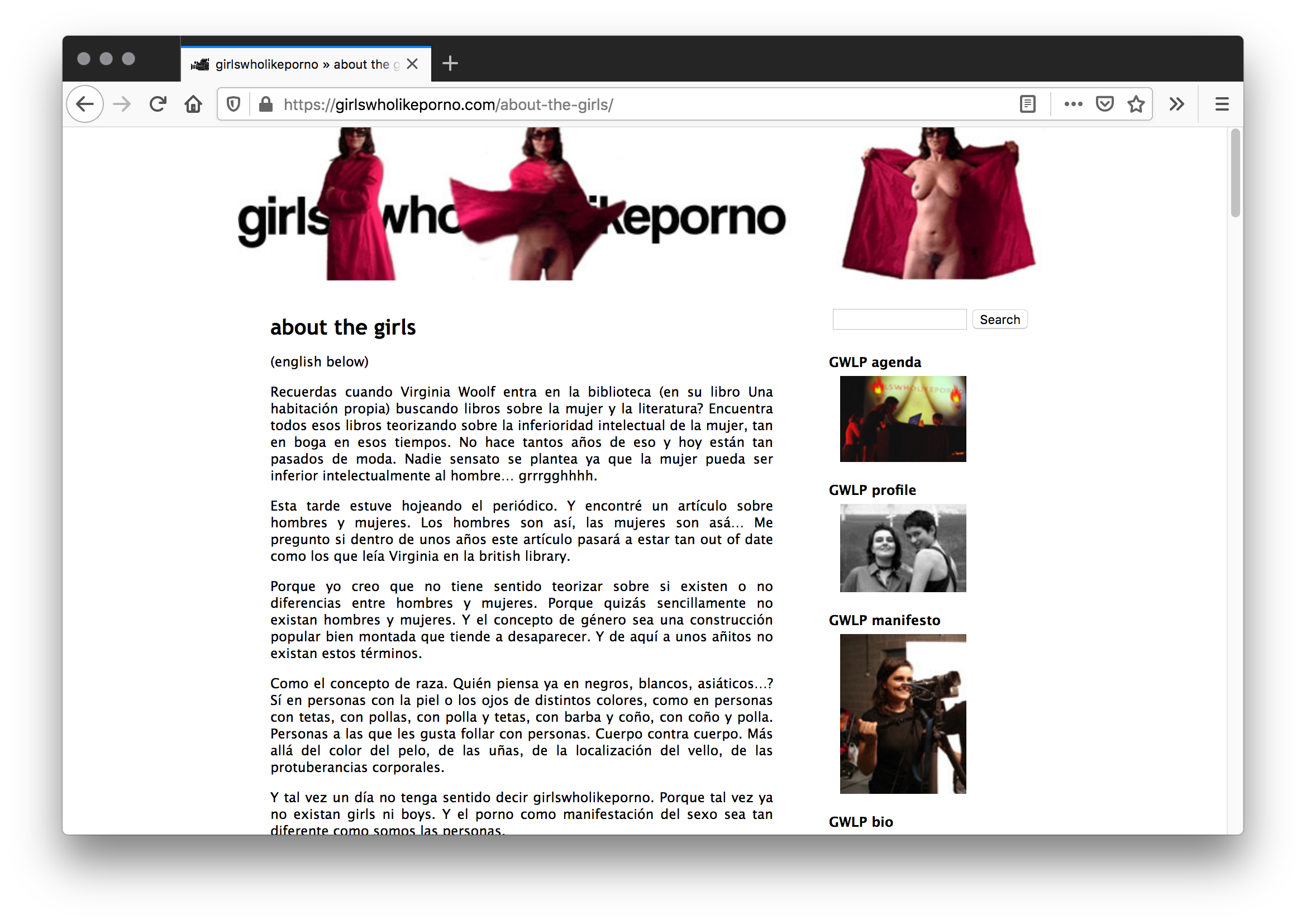
Screenshot, 2020, Firefox v76.0.1 on Mac OS 10.13.3; https://girlswholikeporno.com/manifesto/

“fotografía de Marietta Kesting, Berlin 2006”, image from https://girlswholikeporno.com/profile/
Y tal vez un día no tenga sentido decir girlswholikeporno. Porque tal vez ya no existan girls ni boys. Y el porno como manifestación del sexo sea tan diferente como somos las personas. Y girlswholikeporno sea un espacio donde reflejar nuestras construcciones en torno al sexo. Pero no para chicas o chicos sino para personas a las que les guste el sexo con personas. Personas con pelo en la cara, o en el pecho, con tetas más o menos grandes, con culos, con pollas, coños o lo que tú quieras. Tal vez en un futuro los médicos dejen de operar el sexo de los bebes para que sean verdaderos hombres o verdaderas mujeres. Tal vez en un futuro las personas con coño y barba no se vean empujadas a afeitarse la barba para ‘ser’ mujeres. Tal vez, tal vez, tal vez … Tal vez en el futuro girlswholikeporno esté completamente pasada de moda.
And perhaps some day there will be no more sense in saying girlswholikeporno. Because perhaps there will be no more girls or boys. And the ways of porno will be as different as people are. Girlswholikeporno may be not for girls, not for boys, but for people who like sex with people. People with hair on the face, on the chest, with tits bigger or smaller, with bums, cunts or whatever … Perhaps in the future doctors stop operating the sex of babies to make them real men or women. Perhaps in the future people with a cunt and beard will not feel like shaving to “be” women. Perhaps, perhaps … Perhaps in the future girlswholikeporno will be totally outdated.
2003, Águeda Bañón and María Llopis, https://www.girlswholikeporno.com; excerpt from Águeda Bañón and María Llopis, “Manifesto,” girlswholikeporno, https://girlswholikeporno.com/manifesto

Screenshot, 2020, Firefox v76.0.1 on Mac OS 10.13.3; https://girlswholikeporno.com/manifesto/

“fotografía de Marietta Kesting, Berlin 2006”, image from https://girlswholikeporno.com/profile/
(265)
2003
Blessed Bandwidth
Shilpa Gupta
Shilpa Gupta’s blessed-bandwidth.net invites visitors to log on, choose a religion and get blessed. After selecting from a range of faiths, visitors can view photographs and video of the artist visiting the relevant place of worship with a network cable which she asked to have blessed by the priest or authority. The website also offers its users the chance to receive their own blessings online and provides a certificate to mark the occasion. Blessed-bandwidth.net acts as a space for visitors to reflect on religion and its role in a world that is often divided by faith. The site juxtaposes real and virtual worlds and encourages visitors to consider how these worlds might overlap and merge.
2003, Shilpa Gupta, https://web.archive.org/web/20080908004849/http://www.blessed-bandwidth.net/; excerpt from Johan Pijnappel, “Intermedia Art: Blessed Bandwidth,” Tate, http://www2.tate.org.uk/intermediaart/entry15381.shtm
https://shilpagupta.com/blessed-bandwidth/

image from https://shilpagupta.com/blessed-bandwidth/

image from https://shilpagupta.com/blessed-bandwidth/

image from https://shilpagupta.com/blessed-bandwidth/
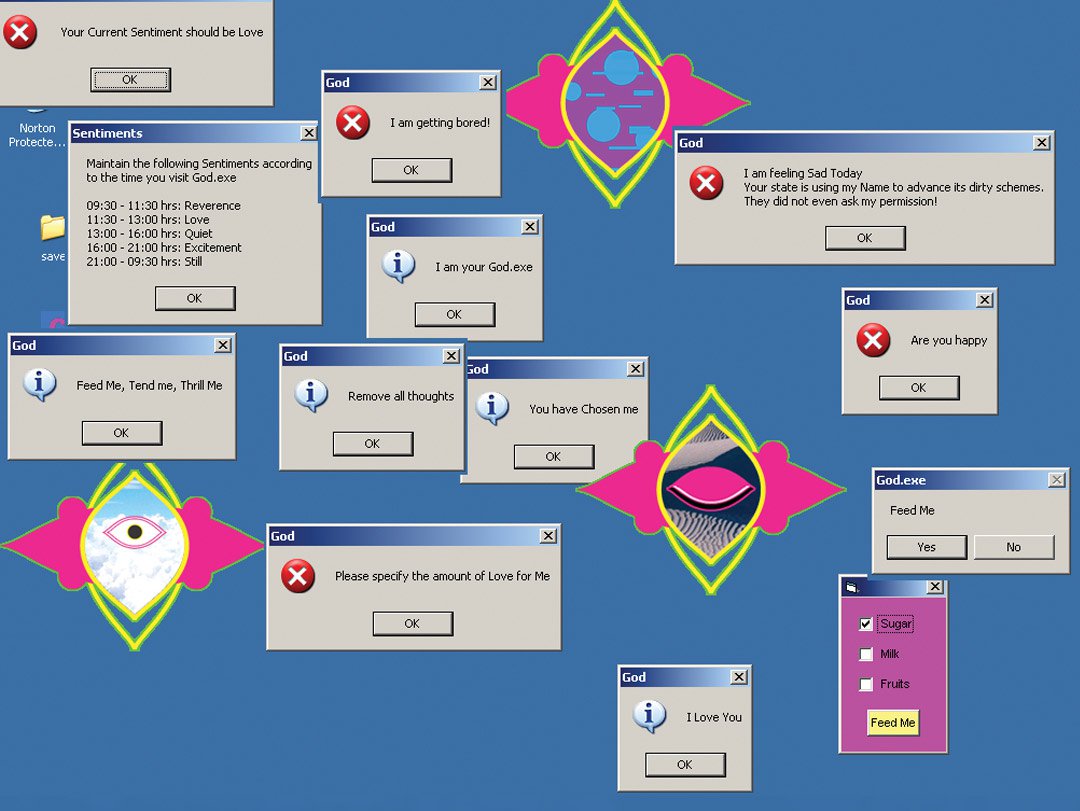
image from https://shilpagupta.com/blessed-bandwidth/
Shilpa Gupta’s blessed-bandwidth.net invites visitors to log on, choose a religion and get blessed. After selecting from a range of faiths, visitors can view photographs and video of the artist visiting the relevant place of worship with a network cable which she asked to have blessed by the priest or authority. The website also offers its users the chance to receive their own blessings online and provides a certificate to mark the occasion. Blessed-bandwidth.net acts as a space for visitors to reflect on religion and its role in a world that is often divided by faith. The site juxtaposes real and virtual worlds and encourages visitors to consider how these worlds might overlap and merge.
2003, Shilpa Gupta, https://web.archive.org/web/20080908004849/http://www.blessed-bandwidth.net/; excerpt from Johan Pijnappel, “Intermedia Art: Blessed Bandwidth,” Tate, http://www2.tate.org.uk/intermediaart/entry15381.shtm
https://shilpagupta.com/blessed-bandwidth/

image from https://shilpagupta.com/blessed-bandwidth/
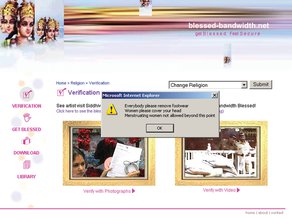
image from https://shilpagupta.com/blessed-bandwidth/

image from https://shilpagupta.com/blessed-bandwidth/

image from https://shilpagupta.com/blessed-bandwidth/
(266)
2003
Post-Coitus
Gita Hashemi
Post-Coitus: Sentences, a netart project, was an iteration of the larger project Strictly Personal which is an ongoing archiving of independently-produced, collected and appropriated media, including text, images, web pages, video and audio footage, e-mails and chat transcripts. In Post-Coitus, I draw parallels between colonialism and the Western/North American male erotic imaginary and between capitalism and heterosexism, with an understanding of colonialism-cum-capitalism as shape-shifting, dynamic phenomena that unfold in material planes and in planes of desire. Aiming to disrupt the normalizing gaze and to push the reader into a productive chasm where the relations and assumptions underlying the contemporary political dynamics are questioned, the work combines visuals, audio and text that remix appropriated material with original content, the latter including direct scans of my own body.
2003, Gita Hashemi, https://postcoitus.opinionware.net/; excerpt from Gita Hashemi, “Art History,” https://html.gitaha.net/art.html#poco

image from http://html.gitaha.net/art.html#poco

image from http://html.gitaha.net/art.html#poco
Post-Coitus: Sentences, a netart project, was an iteration of the larger project Strictly Personal which is an ongoing archiving of independently-produced, collected and appropriated media, including text, images, web pages, video and audio footage, e-mails and chat transcripts. In Post-Coitus, I draw parallels between colonialism and the Western/North American male erotic imaginary and between capitalism and heterosexism, with an understanding of colonialism-cum-capitalism as shape-shifting, dynamic phenomena that unfold in material planes and in planes of desire. Aiming to disrupt the normalizing gaze and to push the reader into a productive chasm where the relations and assumptions underlying the contemporary political dynamics are questioned, the work combines visuals, audio and text that remix appropriated material with original content, the latter including direct scans of my own body.
2003, Gita Hashemi, https://postcoitus.opinionware.net/; excerpt from Gita Hashemi, “Art History,” https://html.gitaha.net/art.html#poco
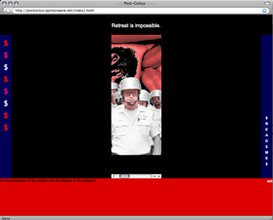
image from http://html.gitaha.net/art.html#poco

image from http://html.gitaha.net/art.html#poco
(267)
2003
Krystalia
Francis Hunger
Krystalia, one of the very few women who could get accepted within the hacker-group, passed away from cancer one year after these images were taken. Francis Hunger transferred this incident into an altar-like object that points out the important role of Krystalia within the male dominated hacker group. A statement by her friend Pham that is printed onto a candle reads:
Krys meant a lot to me. She was a strong, intelligent woman in a man’s world. She made it easier to be taken seriously, when most men in our community didn’t really take an intelligent woman seriously. Some called her a bitch, some insulted her. All respected her. But she was so much more than a ground-breaker. She was a friend.
2003, Francis Hunger; excerpt from Francis Hunger “Krystalia (2003),” Irmielin http://www.irmielin.org/krystalia/; submitted by Francis Hunger

image from http://www.irmielin.org/krystalia/, ”Krystalia Altar (wood, velvet, candles with digital print, framed portait print)“

image from http://www.irmielin.org/krystalia/, ”Portraits from the hacker group (digital prints on cardboard)”
Krystalia, one of the very few women who could get accepted within the hacker-group, passed away from cancer one year after these images were taken. Francis Hunger transferred this incident into an altar-like object that points out the important role of Krystalia within the male dominated hacker group. A statement by her friend Pham that is printed onto a candle reads:
Krys meant a lot to me. She was a strong, intelligent woman in a man’s world. She made it easier to be taken seriously, when most men in our community didn’t really take an intelligent woman seriously. Some called her a bitch, some insulted her. All respected her. But she was so much more than a ground-breaker. She was a friend.
2003, Francis Hunger; excerpt from Francis Hunger “Krystalia (2003),” Irmielin http://www.irmielin.org/krystalia/; submitted by Francis Hunger
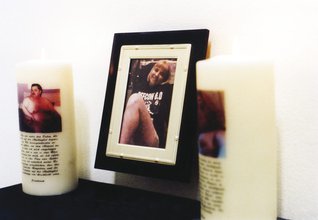
image from http://www.irmielin.org/krystalia/, ”Krystalia Altar (wood, velvet, candles with digital print, framed portait print)“
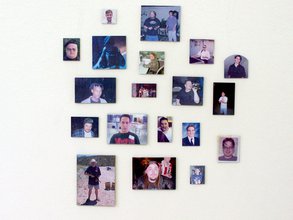
image from http://www.irmielin.org/krystalia/, ”Portraits from the hacker group (digital prints on cardboard)”
(268)
2003
Hacia una nueva historia de la poesía hispánica: Escritura tecnetoesquelética e hipertexto en poetas contemporáneas en la red [Towards a New History of Hispanic Poetry: Technetoskeletal and Hypertext Writing in Contemporary Poets on the Net]
Tina Escaja (Alm@ Pérez)
Las múltiples variantes de opciones-enlaces se resuelven la clave de una nueva ontología liberadora formulada desde la multiplicidad y la heteroglosia. El discurso hipertextual permite por lo mismo la inscripción de un sujeto multiplicado que admite y celebra la autoridad y subjetividad de la mujer. Las escritoras no precisan ahora “robar el lenguaje” para poder expresar su yo tradicionalmente marginado, dividido y excluido por una expresión estética que había constatado su agotamiento. Por el contrario, las creadoras manejan sus propios lenguajes susceptibles de autoridad/es desde el ciberespacio. Se trata de una propuesta eminentemente desjerarquizada posibilitada por la cibernética y estrategias como la opción tecnetoesquelética por la cual el arte de la inteligencia artificial se pone al servicio de la conexión y el encuentro. Esta propuesta inaugura una nueva historia de la poesía hispánica en el que la mujer se presenta como “cyborg” en un encuentro múltiple, genuino, íntimo al tiempo que inclusivo y espectacular, posibilitando los principios para una nueva era en la expresión poética.
The multiple variants of options-links are the key to a new liberating ontology formulated from multiplicity and heteroglossia. Hypertext discourse therefore allows the inscription of a multiplied subject that admits and celebrates the authority and subjectivity of women. Women writers do not now need to “steal language” in order to express their traditionally marginalized, divided and excluded self by an aesthetic expression that had confirmed its exhaustion. On the contrary, the creators use their own languages, which are susceptible to authority/s from cyberspace. It is an eminently de-hierarchical proposal made possible by cybernetics and strategies such as the technetoskeletal option by which the art of artificial intelligence is put at the service of connection and encounter. This proposal inaugurates a new history of Hispanic poetry in which the woman presents herself as a “cyborg” in a multiple, genuine, intimate, as well as inclusive and spectacular encounter, enabling the principles for a new era in poetic expression.
2003, Tina Escaja (Alm@ Pérez), https://webs.ucm.es/info/especulo/numero24/ciberpoe.html; submitted by Tina Escaja (Alm@ Pérez)
Las múltiples variantes de opciones-enlaces se resuelven la clave de una nueva ontología liberadora formulada desde la multiplicidad y la heteroglosia. El discurso hipertextual permite por lo mismo la inscripción de un sujeto multiplicado que admite y celebra la autoridad y subjetividad de la mujer. Las escritoras no precisan ahora “robar el lenguaje” para poder expresar su yo tradicionalmente marginado, dividido y excluido por una expresión estética que había constatado su agotamiento. Por el contrario, las creadoras manejan sus propios lenguajes susceptibles de autoridad/es desde el ciberespacio. Se trata de una propuesta eminentemente desjerarquizada posibilitada por la cibernética y estrategias como la opción tecnetoesquelética por la cual el arte de la inteligencia artificial se pone al servicio de la conexión y el encuentro. Esta propuesta inaugura una nueva historia de la poesía hispánica en el que la mujer se presenta como “cyborg” en un encuentro múltiple, genuino, íntimo al tiempo que inclusivo y espectacular, posibilitando los principios para una nueva era en la expresión poética.
The multiple variants of options-links are the key to a new liberating ontology formulated from multiplicity and heteroglossia. Hypertext discourse therefore allows the inscription of a multiplied subject that admits and celebrates the authority and subjectivity of women. Women writers do not now need to “steal language” in order to express their traditionally marginalized, divided and excluded self by an aesthetic expression that had confirmed its exhaustion. On the contrary, the creators use their own languages, which are susceptible to authority/s from cyberspace. It is an eminently de-hierarchical proposal made possible by cybernetics and strategies such as the technetoskeletal option by which the art of artificial intelligence is put at the service of connection and encounter. This proposal inaugurates a new history of Hispanic poetry in which the woman presents herself as a “cyborg” in a multiple, genuine, intimate, as well as inclusive and spectacular encounter, enabling the principles for a new era in poetic expression.
2003, Tina Escaja (Alm@ Pérez), https://webs.ucm.es/info/especulo/numero24/ciberpoe.html; submitted by Tina Escaja (Alm@ Pérez)
(269)
2004
Mistresses of Their Domain: How Female Entrepreneurs in Cyberporn are Initiating a Gender Power Shift
Kimberlianne Podlas
For women, the Internet has two faces: it has helped foster women’s ownership of business and their entrepreneurial efforts, but has also increased the availability of pornography, often accused as contributing to the continued societal oppression and exploitation of women. Recognizing that some women are directing their entrepreneurial efforts to cyberporn, the seeming antithesis of women’s equality and empowerment, this article considers the connection between and ramifications of these phenomena. Using a sample of 71 cyberporn sites, the gender of owners, operators, and performers was studied. Next, 37% of the female owners were interviewed regarding their motivations for operating cyberporn sites. Results demonstrate that women constitute a significant portion of cyberporn operators and are emigrating from the sex industries to cyberporn. Furthermore, these actions are motivated by the concerns of the traditional working woman: salary, control of work environment, flexibility of schedule. This article, thus, suggests that far from being complicit in the oppression and exploitation of women, web mistresses may reflect a degree of emancipation from male-dominated female imagery and economic control.
2000, Kimberlianne Podlas, CyberPsychology & Behavior 3, no. 5 (October 2000): pp. 847–854; excerpt. p. 847
https://doi.org/10.1089/10949310050191827
For women, the Internet has two faces: it has helped foster women’s ownership of business and their entrepreneurial efforts, but has also increased the availability of pornography, often accused as contributing to the continued societal oppression and exploitation of women. Recognizing that some women are directing their entrepreneurial efforts to cyberporn, the seeming antithesis of women’s equality and empowerment, this article considers the connection between and ramifications of these phenomena. Using a sample of 71 cyberporn sites, the gender of owners, operators, and performers was studied. Next, 37% of the female owners were interviewed regarding their motivations for operating cyberporn sites. Results demonstrate that women constitute a significant portion of cyberporn operators and are emigrating from the sex industries to cyberporn. Furthermore, these actions are motivated by the concerns of the traditional working woman: salary, control of work environment, flexibility of schedule. This article, thus, suggests that far from being complicit in the oppression and exploitation of women, web mistresses may reflect a degree of emancipation from male-dominated female imagery and economic control.
2000, Kimberlianne Podlas, CyberPsychology & Behavior 3, no. 5 (October 2000): pp. 847–854; excerpt. p. 847
https://doi.org/10.1089/10949310050191827
(270)
2004
TechnoFeminism
Judy Wajcman
Feminist approaches of the 1990s and today adopt an optimistic perspective on the nature of digital technologies and their implications for women. In doing so, they present an image of new technology as radically distinct from older technologies and, as such, positive for women. (6) In looking forward to what these new technologies may make possible, they elaborate a new feminist “imaginary” different from the “material reality” of the existing technological order. In this way, in common with other proponents of the impact of information and biotechnologies, they distinguish new technologies from more established ones, and downplay any continuities between them. While attributing a technological determinism to the past, paradoxically such approaches infer a new form of technological determinism, albeit one that predicts a future that advantages women over men. […] We shall see that if the social relations of older technologies are presented in too rigid a form, then the new technologies come to be seen as too open and malleable. If the former give rise to an immobilizing pessimism, the latter obviate the need for feminist technopolitics.
2004, Judy Wajcman (Cambridge: Polity, 2004); excerpt pp. 32–33
Feminist approaches of the 1990s and today adopt an optimistic perspective on the nature of digital technologies and their implications for women. In doing so, they present an image of new technology as radically distinct from older technologies and, as such, positive for women. (6) In looking forward to what these new technologies may make possible, they elaborate a new feminist “imaginary” different from the “material reality” of the existing technological order. In this way, in common with other proponents of the impact of information and biotechnologies, they distinguish new technologies from more established ones, and downplay any continuities between them. While attributing a technological determinism to the past, paradoxically such approaches infer a new form of technological determinism, albeit one that predicts a future that advantages women over men. […] We shall see that if the social relations of older technologies are presented in too rigid a form, then the new technologies come to be seen as too open and malleable. If the former give rise to an immobilizing pessimism, the latter obviate the need for feminist technopolitics.
2004, Judy Wajcman (Cambridge: Polity, 2004); excerpt pp. 32–33
(271)
2004
Cyberfeminism: Next Protocols
Claudia Reiche, Verena Kuni
CYBERFEMINISM is a monster born of net-conditions and cultural traditions, a hybrid concept of the strange new bodies of biotechnology and the new forms of simulation in the age of virtuality. If gender is not obsolete, but in the process of changing, then how to describe these monstrous new sensibilities, identities, bodies—literally, conceptually, politically …? How to perceive and create the skin of the new hybrid existences, both physical and non-physical? As we live in a time of crass power consolidation through pancapitalism, as the gendered power formations and dominating structures are being spread to all corners of the earth by this globalization, and as information technologies are profoundly changing lives, all this can trigger ‘women’ to muster all their knowledge and cunning to find ways of creating active nodes of subversion and alternative processes on however tiny a scale. If CYBERFEMINISM uses the Net as a strategy and a medium for political, cultural, and social action within decentralized information and communication networks, what could the monstrous consequence be?
2004, Claudia Reiche and Verena Kuni, eds. (New York: Autonomedia, 2004); excerpt from “Call for Contributions to a Book,” in Reiche and Kuni, Cyberfeminism, p. 17
Contributions by Yvonne Volkart, Anne-Marie Schleiner, Verena Kuni, Shu Lea Cheang, Claudia Reiche, Julie Doyle, Kate O’Riordan, Prema Murthy, Marina Gržinić, Ingeborg Reichle, Ulrike Bergermann, Christina Goestl, Elisabeth Strowick, and Verena Kuni.
CYBERFEMINISM is a monster born of net-conditions and cultural traditions, a hybrid concept of the strange new bodies of biotechnology and the new forms of simulation in the age of virtuality. If gender is not obsolete, but in the process of changing, then how to describe these monstrous new sensibilities, identities, bodies—literally, conceptually, politically …? How to perceive and create the skin of the new hybrid existences, both physical and non-physical? As we live in a time of crass power consolidation through pancapitalism, as the gendered power formations and dominating structures are being spread to all corners of the earth by this globalization, and as information technologies are profoundly changing lives, all this can trigger ‘women’ to muster all their knowledge and cunning to find ways of creating active nodes of subversion and alternative processes on however tiny a scale. If CYBERFEMINISM uses the Net as a strategy and a medium for political, cultural, and social action within decentralized information and communication networks, what could the monstrous consequence be?
2004, Claudia Reiche and Verena Kuni, eds. (New York: Autonomedia, 2004); excerpt from “Call for Contributions to a Book,” in Reiche and Kuni, Cyberfeminism, p. 17
Contributions by Yvonne Volkart, Anne-Marie Schleiner, Verena Kuni, Shu Lea Cheang, Claudia Reiche, Julie Doyle, Kate O’Riordan, Prema Murthy, Marina Gržinić, Ingeborg Reichle, Ulrike Bergermann, Christina Goestl, Elisabeth Strowick, and Verena Kuni.
(272)
2004
Cyber Selves: Feminist Ethnographies of South Asian Women
Radhika Gajjala
The present work is not about “the subaltern.” It is about the privilege of being able to speak, to write. Yet it is also about what “position[s] of authority we have been given,” have taken, or have been enabled, and at whose expense we speak, but implicitly it is also a question into how we might be able to negotiate from within our speech and our silences in order to transform or disrupt hegemony. It is about negotiating from within the hegemonic and about attempting to disrupt hegemonic narratives. It is about resistance and complicity. Once again, I emphasize that this work is not about “the subaltern.” But it is about not remaining silent in the face of the imagined “subaltern” at the same time as it is about trying not to silence voices of dissent. […] Working-class diasporic women and a majority of the women within the real geographic Third-World locations pay the price for the discourses produced by bourgeois diasporic postcolonials, who are viewed by the Western world as ideal informants because of their/our ability to translate ourselves and our Other so that we fit appropriately within hegemonic structure of power and thought.
2004, Radhika Gajjala (Lanham, MD: AltaMira Press, 2004); excerpt pp. 5–6
The present work is not about “the subaltern.” It is about the privilege of being able to speak, to write. Yet it is also about what “position[s] of authority we have been given,” have taken, or have been enabled, and at whose expense we speak, but implicitly it is also a question into how we might be able to negotiate from within our speech and our silences in order to transform or disrupt hegemony. It is about negotiating from within the hegemonic and about attempting to disrupt hegemonic narratives. It is about resistance and complicity. Once again, I emphasize that this work is not about “the subaltern.” But it is about not remaining silent in the face of the imagined “subaltern” at the same time as it is about trying not to silence voices of dissent. […] Working-class diasporic women and a majority of the women within the real geographic Third-World locations pay the price for the discourses produced by bourgeois diasporic postcolonials, who are viewed by the Western world as ideal informants because of their/our ability to translate ourselves and our Other so that we fit appropriately within hegemonic structure of power and thought.
2004, Radhika Gajjala (Lanham, MD: AltaMira Press, 2004); excerpt pp. 5–6
(273)
2004
A Hacker Manifesto
McKenzie Wark
All classes fear this relentless abstraction of the world, on which their fortunes depend. All classes but one: the hacker class. We are the hackers of abstraction. We produce new concepts, new perceptions, new sensations, hacked out of raw data. What code we hack, be it programming, language, poetic language, math or music, curves or colorings, we are the abstracters of new worlds. Whether we come to represent ourselves as researchers or authors, artists or biologists, chemists or musicians, philosophers or programmers, each of these subjectivities is but a fragment of a class still becoming, bit by bit, aware of itself as such.
And yet, we don’t quite know who we are. That is why this book seeks to make manifest our origins, our purpose and our interests. A hacker manifesto: Not the only manifesto, as it is in the nature of the hacker to differ from others, to differ even from oneself, over time. To hack is to differ. A hacker manifesto cannot claim to represent what refuses representation.
2004, McKenzie Wark (Cambridge, MA: Harvard University Press, 2004); excerpt par. 2, “Abstraction”
http://www.hup.harvard.edu/catalog.php?isbn=9780674015432
All classes fear this relentless abstraction of the world, on which their fortunes depend. All classes but one: the hacker class. We are the hackers of abstraction. We produce new concepts, new perceptions, new sensations, hacked out of raw data. What code we hack, be it programming, language, poetic language, math or music, curves or colorings, we are the abstracters of new worlds. Whether we come to represent ourselves as researchers or authors, artists or biologists, chemists or musicians, philosophers or programmers, each of these subjectivities is but a fragment of a class still becoming, bit by bit, aware of itself as such.
And yet, we don’t quite know who we are. That is why this book seeks to make manifest our origins, our purpose and our interests. A hacker manifesto: Not the only manifesto, as it is in the nature of the hacker to differ from others, to differ even from oneself, over time. To hack is to differ. A hacker manifesto cannot claim to represent what refuses representation.
2004, McKenzie Wark (Cambridge, MA: Harvard University Press, 2004); excerpt par. 2, “Abstraction”
http://www.hup.harvard.edu/catalog.php?isbn=9780674015432
(274)
2004
Domestic as Virtual Reality: Reflections on NetArt and Postfeminism
Jess Loseby
My introduction to net.art began in 2001, past its “heroic era.” Indeed, by the time I felt confident enough to upload my tentative photomontaged sound-bytes, New Media writers had already begun to say that the network avant-garde was limping, if not mortally wounded. At that time I was working off a laptop based on my kitchen table from which I could operate a limited artistic practice whilst chasing my youngest child around the house. Thus, the kitchen table became my portal to digitality, not only the hub of my digital practice (as it is the hub of my domesticity), but the center of my desire to develop my thematics of the cyber-chick—sitting somewhere between the microwave and the modem in the isolation of the domestic/digital world, questioning what the avant-garde might be and what my role might be in it, just as I was throwing myself into what at that time appeared to be its last days.
2004, Jess Loseby, Electronic Book Review, January 27, 2004, http://electronicbookreview.com/essay/the-domestic-as-virtual-reality-reflections-on-netart-and-postfeminism/
My introduction to net.art began in 2001, past its “heroic era.” Indeed, by the time I felt confident enough to upload my tentative photomontaged sound-bytes, New Media writers had already begun to say that the network avant-garde was limping, if not mortally wounded. At that time I was working off a laptop based on my kitchen table from which I could operate a limited artistic practice whilst chasing my youngest child around the house. Thus, the kitchen table became my portal to digitality, not only the hub of my digital practice (as it is the hub of my domesticity), but the center of my desire to develop my thematics of the cyber-chick—sitting somewhere between the microwave and the modem in the isolation of the domestic/digital world, questioning what the avant-garde might be and what my role might be in it, just as I was throwing myself into what at that time appeared to be its last days.
2004, Jess Loseby, Electronic Book Review, January 27, 2004, http://electronicbookreview.com/essay/the-domestic-as-virtual-reality-reflections-on-netart-and-postfeminism/
(275)
2004
On Cyberfeminism and Cyberwomanism: High-Tech Mediations of Feminism’s Discontents
Anna Everett
At the height of mainstream media proclamations of the arrival of a new postfeminist age during the 1990s, feminism and cyberspace became fruitfully conjoined. As Faith Wilding characterizes it, “Linking the terms ‘cyber’ and ‘feminism’ creates a crucial new formation in the history of feminism(s) and of the e‐media. Each part of the term necessarily modifies the meaning of the other.” The significant year, in my view, was 1997, an amazingly productive year for women confronting their often contradictory positions of “working with new technologies and feminist politics.” That year saw the incredible confluence of women’s groundbreaking involvement in digital media technologies across theoretical, critical, and activist spheres of feminist influence. And despite technology’s gender gap and racialized digital divide rhetorics, black and white women's technophilia would not be denied.
2004, Anna Everett, in “Beyond the Gaze: Recent Approaches to Film Feminisms,” eds. Kathleen McHugh and Vivian Sobchack, special issue, Signs: Journal of Women in Culture and Society 30, no. 1 (Autumn 2004): pp. 1278–1286; excerpt p. 1278
https://doi.org/10.1086/422235
At the height of mainstream media proclamations of the arrival of a new postfeminist age during the 1990s, feminism and cyberspace became fruitfully conjoined. As Faith Wilding characterizes it, “Linking the terms ‘cyber’ and ‘feminism’ creates a crucial new formation in the history of feminism(s) and of the e‐media. Each part of the term necessarily modifies the meaning of the other.” The significant year, in my view, was 1997, an amazingly productive year for women confronting their often contradictory positions of “working with new technologies and feminist politics.” That year saw the incredible confluence of women’s groundbreaking involvement in digital media technologies across theoretical, critical, and activist spheres of feminist influence. And despite technology’s gender gap and racialized digital divide rhetorics, black and white women's technophilia would not be denied.
2004, Anna Everett, in “Beyond the Gaze: Recent Approaches to Film Feminisms,” eds. Kathleen McHugh and Vivian Sobchack, special issue, Signs: Journal of Women in Culture and Society 30, no. 1 (Autumn 2004): pp. 1278–1286; excerpt p. 1278
https://doi.org/10.1086/422235
(276)
2004
A Rant About “Technology”
Ursula K. Le Guin
“Hard” sf [science fiction] is all about technology, and “soft” sf doesn’t have any technology, right? And my books don’t have technology in them, because I am only interested in psychology and emotions and squashy stuff like that, right?
Not right. How can genuine science fiction of any kind lack technological content? Even if its principal interest isn’t in engineering or how machines work—if like most of mine, it’s more interested in how minds, societies, and cultures work—still, how can anybody make a story about a future or an alien culture without describing, implicitly or explicitly, its technology?
Nobody can. I can’t imagine why they’d want to.
Its technology is how a society copes with physical reality: how people get and keep and cook food, how they clothe themselves, what their power sources are (animal? human? water? wind? electricity? other?) what they build with and what they build, their medicine—and so on and on. Perhaps very ethereal people aren’t interested in these mundane, bodily matters, but I’m fascinated by them, and I think most of my readers are too.
Technology is the active human interface with the material world.
2004, Ursula K. Le Guin, Ursula K. Le Guin Archive, http://ursulakleguinarchive.com/Note-Technology.htm
Editor’s Note: I often refer to Ursula K. Le Guin’s concept of gathering in my practice. In my essay “On Gathering,” I wrote, “In Ursula K. Le Guin’s Carrier Bag Theory of Fiction (1986), Le Guin posits the first human tool as the basket, not the spear, thereby recasting the first protagonist as a gatherer, not a hunter. Not only did this address the deeply gendered roles of these two parts, it also changed the singular hero to the plural collective, from he to we. ‘Before the tool that forces energy outward,’ she writes, ‘we made the tool that brings energy home.’ Gathering, for Le Guin, is not a masculine, techno-utopian process of disruption or of moving fast and breaking things, but the methodical, deep labor that comes from ‘looking around, rather than looking ahead,’ from gathering rather than hunting.” https://issue1.shiftspace.pub/on-gathering-mindy-seu —MS

artifact from http://ursulakleguinarchive.com/Note-Technology.htm
“Hard” sf [science fiction] is all about technology, and “soft” sf doesn’t have any technology, right? And my books don’t have technology in them, because I am only interested in psychology and emotions and squashy stuff like that, right?
Not right. How can genuine science fiction of any kind lack technological content? Even if its principal interest isn’t in engineering or how machines work—if like most of mine, it’s more interested in how minds, societies, and cultures work—still, how can anybody make a story about a future or an alien culture without describing, implicitly or explicitly, its technology?
Nobody can. I can’t imagine why they’d want to.
Its technology is how a society copes with physical reality: how people get and keep and cook food, how they clothe themselves, what their power sources are (animal? human? water? wind? electricity? other?) what they build with and what they build, their medicine—and so on and on. Perhaps very ethereal people aren’t interested in these mundane, bodily matters, but I’m fascinated by them, and I think most of my readers are too.
Technology is the active human interface with the material world.
2004, Ursula K. Le Guin, Ursula K. Le Guin Archive, http://ursulakleguinarchive.com/Note-Technology.htm
Editor’s Note: I often refer to Ursula K. Le Guin’s concept of gathering in my practice. In my essay “On Gathering,” I wrote, “In Ursula K. Le Guin’s Carrier Bag Theory of Fiction (1986), Le Guin posits the first human tool as the basket, not the spear, thereby recasting the first protagonist as a gatherer, not a hunter. Not only did this address the deeply gendered roles of these two parts, it also changed the singular hero to the plural collective, from he to we. ‘Before the tool that forces energy outward,’ she writes, ‘we made the tool that brings energy home.’ Gathering, for Le Guin, is not a masculine, techno-utopian process of disruption or of moving fast and breaking things, but the methodical, deep labor that comes from ‘looking around, rather than looking ahead,’ from gathering rather than hunting.” https://issue1.shiftspace.pub/on-gathering-mindy-seu —MS
artifact from http://ursulakleguinarchive.com/Note-Technology.htm
(277)
2004
Cyberfeminist Fantasy of the Pleasure of the Cyborg
Yvonne Volkart
The idea of the cyborgian state of being is not only a cyberfeminist one, it is the dominant belief since cyberpunk (which has been conceived at the same time as the “A Cyborg Manifesto”), and the idea of the “Post Human.” Another precedent is the mechanic castrating woman which has been negotiated at the beginning of this century, especially in Dadaism and Surrealism. As I mention earlier, unlike cyberfeminism which is utopian and ironic, a lot of these reflections are pessimistic, frightful, cynical, or technolibertarian. Although cyberfeminists believe in what I called a “digital turn,” I wouldn't speak of technodeterminism. Rather, the cyberfeminists’ cyborg agents are embodied symptoms and signifiers of a time which is understood as an invasive and mutating one.
2004, Yvonne Volkart, Old Boys Network, https://www.obn.org/reading_room/writings/html/cyberfem_fantasy.html
The idea of the cyborgian state of being is not only a cyberfeminist one, it is the dominant belief since cyberpunk (which has been conceived at the same time as the “A Cyborg Manifesto”), and the idea of the “Post Human.” Another precedent is the mechanic castrating woman which has been negotiated at the beginning of this century, especially in Dadaism and Surrealism. As I mention earlier, unlike cyberfeminism which is utopian and ironic, a lot of these reflections are pessimistic, frightful, cynical, or technolibertarian. Although cyberfeminists believe in what I called a “digital turn,” I wouldn't speak of technodeterminism. Rather, the cyberfeminists’ cyborg agents are embodied symptoms and signifiers of a time which is understood as an invasive and mutating one.
2004, Yvonne Volkart, Old Boys Network, https://www.obn.org/reading_room/writings/html/cyberfem_fantasy.html
(278)
2004
Can You See Us Now? ¿Ya Nos Pueden Ver?
subRosa
“subRosa’s installation, Can You See Us Now? ¿Ya Nos Pueden Ver? at the Massachusetts Museum of Contemporary Art, attempted to map the often invisible intersections of women’s material and affective labor in cultures of production (and production of cultures) in North Adams, MA, and Ciudad Juárez, Mexico. [...] Processes of global change are manifested locally where specific forces come together to shape the conditions of life. subRosa discovered that many aspects of the labor conditions and daily lives of women in North Adams resonated intimately with those of women in Ciudad Juárez.
In the museum installation, oversized map pins on large aerial photographs of North Adams and Ciudad Juárez denoted ‘Points of Visibility’ – usually places of refuge or exploitation – in the two cities. A ‘forensic floor’ concealed a dozen spaces beneath its weathered wooden surface. Visitors became active investigators as they discovered the objects, texts, and clues beneath the loose floorboards and made connections between the histories and present-day lived experiences of women working in both cities. A large pamphlet that unfolded like a road map provided texts, images and bibliographical information that further explored the themes of the installation.” —subRosa
http://canuseeusnow.refugia.net/index2.html
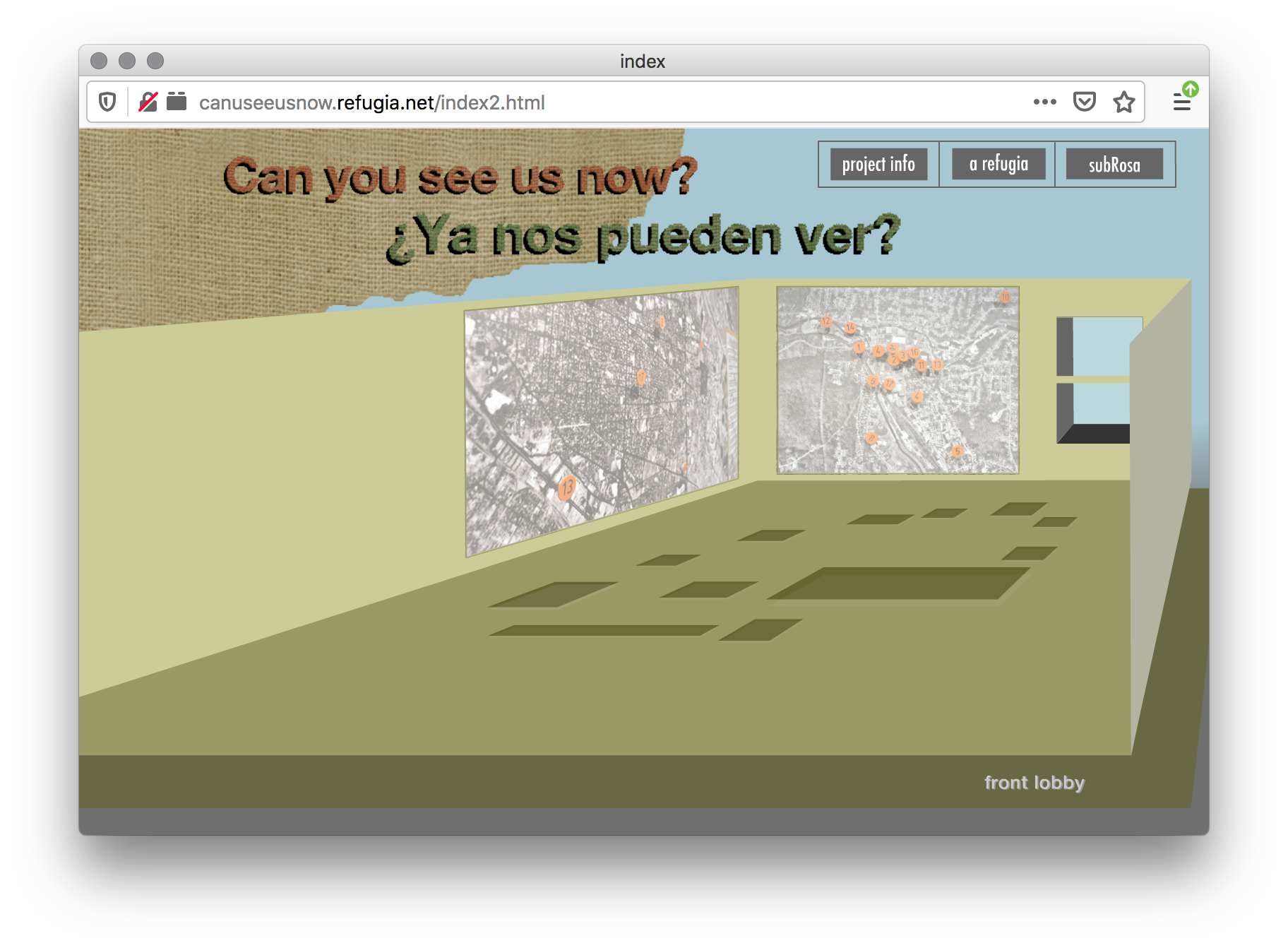
Screenshot, 2020, Firefox v76.0.1 on Mac OS 10.13.3; canuseeusnow.refugia.net/index2.html
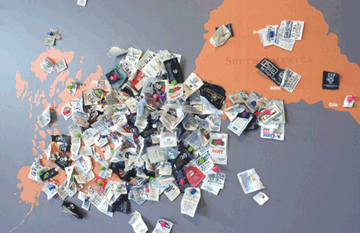
“Museum visitors [were invited] to trim off the tags from their own clothing and pin them to the map at the geographical point of manufacture, or assembly, for that article of clothing.” Image from canuseeusnow.refugia.net/clothingmap.htm
“subRosa’s installation, Can You See Us Now? ¿Ya Nos Pueden Ver? at the Massachusetts Museum of Contemporary Art, attempted to map the often invisible intersections of women’s material and affective labor in cultures of production (and production of cultures) in North Adams, MA, and Ciudad Juárez, Mexico. [...] Processes of global change are manifested locally where specific forces come together to shape the conditions of life. subRosa discovered that many aspects of the labor conditions and daily lives of women in North Adams resonated intimately with those of women in Ciudad Juárez.
In the museum installation, oversized map pins on large aerial photographs of North Adams and Ciudad Juárez denoted ‘Points of Visibility’ – usually places of refuge or exploitation – in the two cities. A ‘forensic floor’ concealed a dozen spaces beneath its weathered wooden surface. Visitors became active investigators as they discovered the objects, texts, and clues beneath the loose floorboards and made connections between the histories and present-day lived experiences of women working in both cities. A large pamphlet that unfolded like a road map provided texts, images and bibliographical information that further explored the themes of the installation.” —subRosa
http://canuseeusnow.refugia.net/index2.html
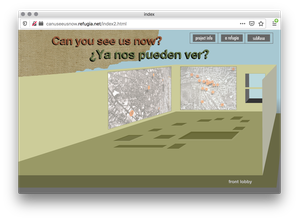
Screenshot, 2020, Firefox v76.0.1 on Mac OS 10.13.3; canuseeusnow.refugia.net/index2.html
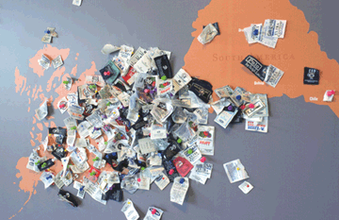
“Museum visitors [were invited] to trim off the tags from their own clothing and pin them to the map at the geographical point of manufacture, or assembly, for that article of clothing.” Image from canuseeusnow.refugia.net/clothingmap.htm
(279)
2004
Cyborg Web Shop
Andreaja Kuluncic
What is a cyborg?
Visitor 31: Cyborg is human body and brain advanced with technology and connected to the AI in every moment. It is connected with other cyborgs but it haves its own conciousness. it can do things that are impossible to normal humans (telekinesis etc.)
Visitor 30: a living being existing with parts of living organism with ‘integrated’ parts of hi-tech
Visitor 29: Sistem which combine a different parts from different sistem’s (actually I don’t know)
Visitor 28: A human with artificial implementations and implantations which improve his or hers physical skils or replace body parts which were lost because of an illness or an accident.
2004, Andreaja Kuluncic, https://web.archive.org/web/20040611002837/http://www.cyborg.com.hr/
Editor’s Note: In the Cyborg Web Shop, website visitors are asked “What is a cyborg?” I especially like Visitor 29’s misspelling of “system” as “sistem.” Whether intentional or not, the error is reminiscent of reclamatory terms like “cistem” (a system built by cisgendered people) and “herstory” (changing the prefix of “history” from male to female). —MS
What is a cyborg?
Visitor 31: Cyborg is human body and brain advanced with technology and connected to the AI in every moment. It is connected with other cyborgs but it haves its own conciousness. it can do things that are impossible to normal humans (telekinesis etc.)
Visitor 30: a living being existing with parts of living organism with ‘integrated’ parts of hi-tech
Visitor 29: Sistem which combine a different parts from different sistem’s (actually I don’t know)
Visitor 28: A human with artificial implementations and implantations which improve his or hers physical skils or replace body parts which were lost because of an illness or an accident.
2004, Andreaja Kuluncic, https://web.archive.org/web/20040611002837/http://www.cyborg.com.hr/
Editor’s Note: In the Cyborg Web Shop, website visitors are asked “What is a cyborg?” I especially like Visitor 29’s misspelling of “system” as “sistem.” Whether intentional or not, the error is reminiscent of reclamatory terms like “cistem” (a system built by cisgendered people) and “herstory” (changing the prefix of “history” from male to female). —MS
(280)
2004
Linuxchix Africa
Anna Badimo, Dorcas Muthoni
Linuxchix Africa was formed in 2004 by African women and for African women. It is a chapter in Africa affiliated to Linuxchix worldwide. The aim of the African chapter is to help toward building the critical mass of Linux skills among African women, and to advocate for the use of Free and Open Source Software for the many community development challenges being faced by Africans, especially African women. Africa LinuxChix welcomes women from any part of Africa to join us and give us ideas on how we can make that difference.
2004, Anna Badimo and Dorcas Muthoni, https://www.linuxchix.org/content/africa
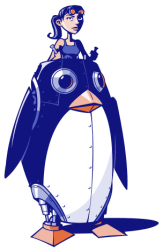
artifact from https://www.linuxchix.org/content/africa

artifact from https://www.linuxchix.org/content/africa
Linuxchix Africa was formed in 2004 by African women and for African women. It is a chapter in Africa affiliated to Linuxchix worldwide. The aim of the African chapter is to help toward building the critical mass of Linux skills among African women, and to advocate for the use of Free and Open Source Software for the many community development challenges being faced by Africans, especially African women. Africa LinuxChix welcomes women from any part of Africa to join us and give us ideas on how we can make that difference.
2004, Anna Badimo and Dorcas Muthoni, https://www.linuxchix.org/content/africa
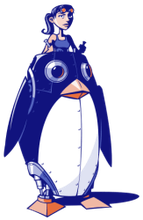
artifact from https://www.linuxchix.org/content/africa

artifact from https://www.linuxchix.org/content/africa
(281)
2004
When Jill Jacks In: Queer Women and the Net
Mary Bryson
The Net provides those QLBT women with the means to get online an almost infinite regress of interactive stages replete with culturally familiar characters and half-written scripts that afford the opportunity to practice, in spaces that Amy Bruckman has termed, “identity workshops,” live performances of a deviant identity—the queered woman .
Sue-Ellen Case (1996) invokes the “performing lesbian” in order to underscore thetheatrical and staged material conditions within which ‘lesbian’ identities are constructed and deployed. Case’s analysis retains a politics of alterity without invoking an ontological claim to essence. If one considers the notion of performativity to be a productive strategy for representing what it is to be queer, then the group that is made up of QLBT women who are very active in online environments provides us an interesting opportunity to consider what specific identificatory possibilities are enabled when Jill jacks in.
2004, Mary Bryson, Feminist Media Studies 4, no. 3 (2004): pp. 239–254; excerpt p. 250
https://www.are.na/block/8078810
The Net provides those QLBT women with the means to get online an almost infinite regress of interactive stages replete with culturally familiar characters and half-written scripts that afford the opportunity to practice, in spaces that Amy Bruckman has termed, “identity workshops,” live performances of a deviant identity—the queered woman .
Sue-Ellen Case (1996) invokes the “performing lesbian” in order to underscore thetheatrical and staged material conditions within which ‘lesbian’ identities are constructed and deployed. Case’s analysis retains a politics of alterity without invoking an ontological claim to essence. If one considers the notion of performativity to be a productive strategy for representing what it is to be queer, then the group that is made up of QLBT women who are very active in online environments provides us an interesting opportunity to consider what specific identificatory possibilities are enabled when Jill jacks in.
2004, Mary Bryson, Feminist Media Studies 4, no. 3 (2004): pp. 239–254; excerpt p. 250
https://www.are.na/block/8078810
(282)
2004
Terra Nullius, Terra Incognito
Jason E. Lewis
We’re all immigrants in cyberspace. This is one of the most interesting implications of “Unnatural Resources,” the theme of the latest incarnation of the online gallery CyberPowWow set to go live in May 2004. “Unnatural Resources” takes an old conversation about Natives, non-Natives and the use of natural resources and casts it into a new realm, the conglomeration of interconnected virtual constructs we call cyberspace.
“Unnatural Resources” poses the following question: if we consider cyberspace to be another frontier undergoing colonization, and if we’re concerned with how that colonization plays out, might we not do well to reflect on the historical course of colonization on this continent? Pre-contact Natives were more complex than the profoundly eco-conscious warriors imagined by the ecological left, and the European colonizers were more complex than the greedy capitalists populating the same dream/nightmare, but “Unnatural Resources” seeks to use these descriptions as a way of identifying the extreme positions of an argument that contrasts the husbanding of natural resources for the common good and the exploitation of them for personal gain. When the husbanding side loses out to the exploitation side of the debate, we get poisoned fish stocks, mad cows and global warming.
2003, Jason Edward Lewis, Blackflash 21, no. 1 (2003), http://www.cyberpowwow.net/cpw04_text.html
We’re all immigrants in cyberspace. This is one of the most interesting implications of “Unnatural Resources,” the theme of the latest incarnation of the online gallery CyberPowWow set to go live in May 2004. “Unnatural Resources” takes an old conversation about Natives, non-Natives and the use of natural resources and casts it into a new realm, the conglomeration of interconnected virtual constructs we call cyberspace.
“Unnatural Resources” poses the following question: if we consider cyberspace to be another frontier undergoing colonization, and if we’re concerned with how that colonization plays out, might we not do well to reflect on the historical course of colonization on this continent? Pre-contact Natives were more complex than the profoundly eco-conscious warriors imagined by the ecological left, and the European colonizers were more complex than the greedy capitalists populating the same dream/nightmare, but “Unnatural Resources” seeks to use these descriptions as a way of identifying the extreme positions of an argument that contrasts the husbanding of natural resources for the common good and the exploitation of them for personal gain. When the husbanding side loses out to the exploitation side of the debate, we get poisoned fish stocks, mad cows and global warming.
2003, Jason Edward Lewis, Blackflash 21, no. 1 (2003), http://www.cyberpowwow.net/cpw04_text.html
(283)
2004
Artinjun
Cheryl L’Hirondelle, Joseph Naytowhow
artinjun.ca is an open site for ndn interventions and projects for and by artists in any discipline who self identify as indigenous. it is also a site for indigenous art organizations dedicated to supporting art activities. artinjun.ca is devoted to the propagation of art on the internet and the artistic exploration of new technologies.
2004, Cheryl L’Hirondelle and Joseph Naytowhow, http://www.artinjun.ca/artinjunv2/home.php
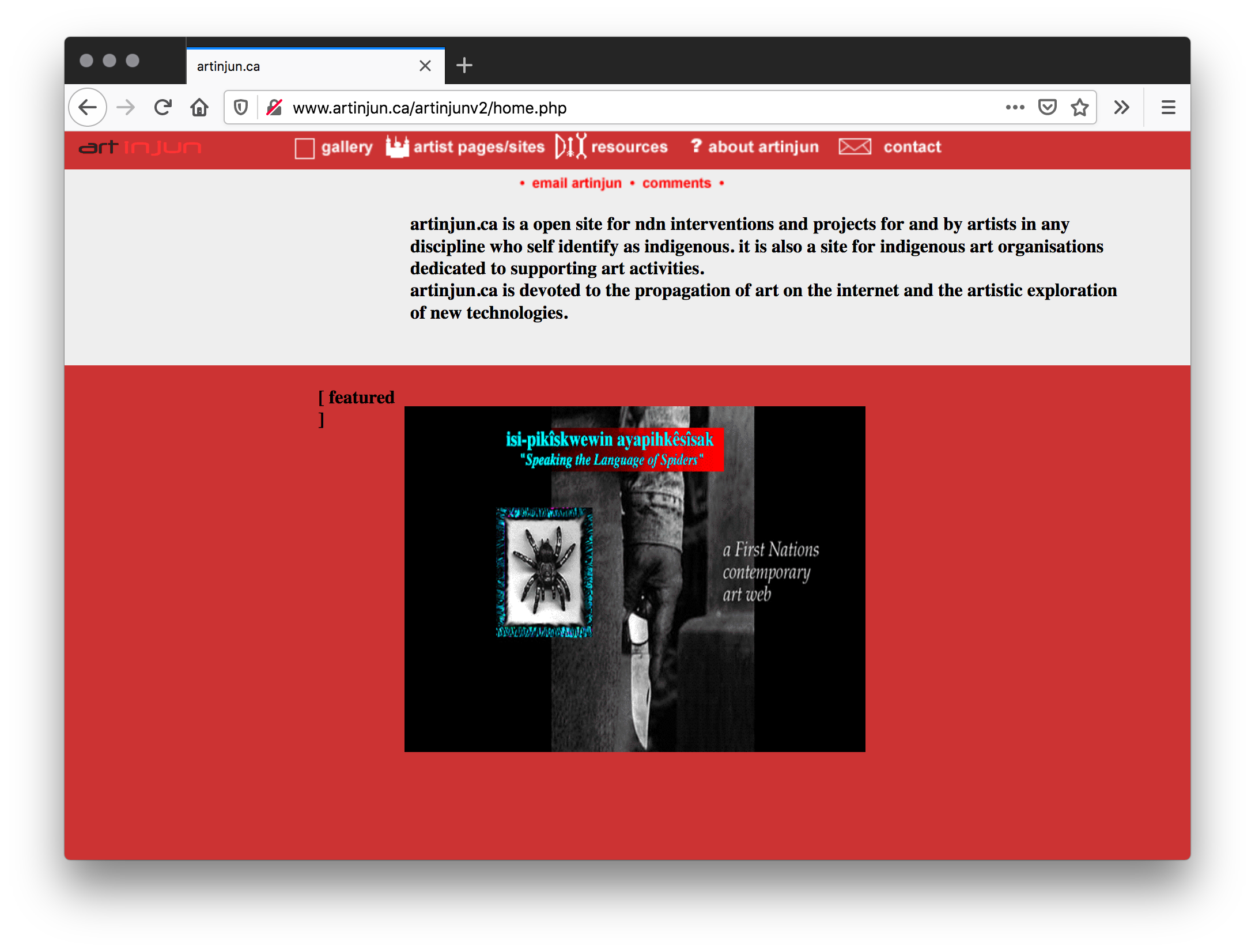
Screenshot, 2020, Firefox v76.0.1 on Mac OS 10.13.3; http://www.artinjun.ca/artinjunv2/home.php
artinjun.ca is an open site for ndn interventions and projects for and by artists in any discipline who self identify as indigenous. it is also a site for indigenous art organizations dedicated to supporting art activities. artinjun.ca is devoted to the propagation of art on the internet and the artistic exploration of new technologies.
2004, Cheryl L’Hirondelle and Joseph Naytowhow, http://www.artinjun.ca/artinjunv2/home.php
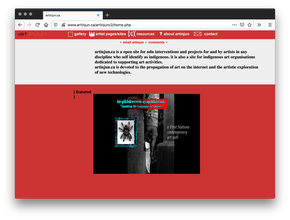
Screenshot, 2020, Firefox v76.0.1 on Mac OS 10.13.3; http://www.artinjun.ca/artinjunv2/home.php
(284)
2004
ULTRAFUTURO
Boryana Rossa; Oleg Mavromatti, Katia Damianova, Anton Terziev
Boryana Rossa and Oleg Mavromatti established the collective ULTRAFUTURO, an international group of artists engaged with issues of technology, science and their social implications through intersectional cyber feminist perspectives. Their manifesto appeals for a symbiotic and mutually respectful relationship with the machines, proclaims the Robot as a collective image of all marginalized and discriminated groups in any society, declares both gender and sex (pol in Russian and Bulgarian) to become unnecessary and obsolete in the near future following advances in biotechnology. ULTRAFUTURO states that the existence of “pol” is “the last valve” or the last obstacle before the Great Revolution of the Species which will lead to society that embraces differences and variations not as a reason for hostility, but joy. ULTRAFUTURO also established the International Robot Day, celebrated since 2004 on february 5th.
2004, Boryana Rossa, Oleg Mavromatti, Katia Damianova, and Anton Terziev, http://boryanarossa.com/category/ultrafuturo/; referred by Boryana Rossa
Boryana Rossa and Oleg Mavromatti established the collective ULTRAFUTURO, an international group of artists engaged with issues of technology, science and their social implications through intersectional cyber feminist perspectives. Their manifesto appeals for a symbiotic and mutually respectful relationship with the machines, proclaims the Robot as a collective image of all marginalized and discriminated groups in any society, declares both gender and sex (pol in Russian and Bulgarian) to become unnecessary and obsolete in the near future following advances in biotechnology. ULTRAFUTURO states that the existence of “pol” is “the last valve” or the last obstacle before the Great Revolution of the Species which will lead to society that embraces differences and variations not as a reason for hostility, but joy. ULTRAFUTURO also established the International Robot Day, celebrated since 2004 on february 5th.
2004, Boryana Rossa, Oleg Mavromatti, Katia Damianova, and Anton Terziev, http://boryanarossa.com/category/ultrafuturo/; referred by Boryana Rossa
(285)
2004
ULTRAFUTURO Manifesto
Boryana Rossa
The only resolution of the conflict is to declare intelligent machines as equal to humans, to grant them all human rights and freedoms, and to acknowledge the presence of their free will allowing them to choose their destiny for themselves.
/…/ We declare “the 3rd hand syndrome” to be humiliating to the machine, since according to it the machine is not recognized as a symbiot—independent and equal to human—but is downgraded to a prosthetic device or inferior being, a “half-body,” a” third hand” unable to exist without its human carrier/master.
We declare the concepts of gender and sex (pol – Bg, Ru) to be unnecessary burdens, and to become obsolete in the nearest future both morally and physically! We are sure that post-beings of the future will live in total harmony with each other without such rudiments as a sexual determination as a reason for hostility and not joy. Therefore they will be liberated from intersexual conflicts and misunderstandings on the basis of gender or sexual identity. /…/ Woman is the Robot of the world.
2004, Boryana Rossa, http://boryanarossa.com/ultrafuturo-manifesto/; referred by Boryana Rossa
The only resolution of the conflict is to declare intelligent machines as equal to humans, to grant them all human rights and freedoms, and to acknowledge the presence of their free will allowing them to choose their destiny for themselves.
/…/ We declare “the 3rd hand syndrome” to be humiliating to the machine, since according to it the machine is not recognized as a symbiot—independent and equal to human—but is downgraded to a prosthetic device or inferior being, a “half-body,” a” third hand” unable to exist without its human carrier/master.
We declare the concepts of gender and sex (pol – Bg, Ru) to be unnecessary burdens, and to become obsolete in the nearest future both morally and physically! We are sure that post-beings of the future will live in total harmony with each other without such rudiments as a sexual determination as a reason for hostility and not joy. Therefore they will be liberated from intersexual conflicts and misunderstandings on the basis of gender or sexual identity. /…/ Woman is the Robot of the world.
2004, Boryana Rossa, http://boryanarossa.com/ultrafuturo-manifesto/; referred by Boryana Rossa
(286)
2004
The Last Valve
Boryana Rossa with Ultrafuturo
Boryana Rossa sees her performance The Last Valve, in which she sews her vulva shut with surgical thread, as a manifesto for a future that is free of gender distinctions. Rossa was inspired by transgender models of sexuality, by sexually hybrid human and animal bodies, and by the emergence of artificial robotic and biological cyborgs free of gender determinations. The video combines two recording processes, a regular video recording of the performance and a process, which converts the electrical potential of the artist’s skin into a video signal. The two recordings are given equal importance and are shown side by side.
2004, Boryana Rossa and Ultrafuturo; excerpt from “Boryana Rossa and Ultrafuturo: The Last Valve,” re.act.feminism—a perfoming archive, http://www.reactfeminism.org/entry.php?l=lb&id=139&e=a&v=&a=Boryana%20Rossa&t=; referred by Boryana Rossa

“Boryana Rossa with Ultrafuturo, The Last Valve, 2004,” image from http://www.reactfeminism.org/entry.php?l=lb&id=139&e=a&v=&a=Boryana%20Rossa&t=
Boryana Rossa sees her performance The Last Valve, in which she sews her vulva shut with surgical thread, as a manifesto for a future that is free of gender distinctions. Rossa was inspired by transgender models of sexuality, by sexually hybrid human and animal bodies, and by the emergence of artificial robotic and biological cyborgs free of gender determinations. The video combines two recording processes, a regular video recording of the performance and a process, which converts the electrical potential of the artist’s skin into a video signal. The two recordings are given equal importance and are shown side by side.
2004, Boryana Rossa and Ultrafuturo; excerpt from “Boryana Rossa and Ultrafuturo: The Last Valve,” re.act.feminism—a perfoming archive, http://www.reactfeminism.org/entry.php?l=lb&id=139&e=a&v=&a=Boryana%20Rossa&t=; referred by Boryana Rossa

“Boryana Rossa with Ultrafuturo, The Last Valve, 2004,” image from http://www.reactfeminism.org/entry.php?l=lb&id=139&e=a&v=&a=Boryana%20Rossa&t=
(287)
2004
CyberPowWow 04
Nation to Nation
Capitalist wisdom teaches that the value of a territory is a function of its resources. Wars have been fought over lands that yield gold, oil and other exploitable raw materials. Indigenous peoples have traditionally placed a different set of values on the land. Rather than seeing it as a vessel from which to extract and exhaust resources, Mother Earth is regarded as a site of exchange between Creator and individual, a support system to be held in trust for future generations.
As urban Aboriginal artist-curators generating an Aboriginally-determined corner of cyberspace, these are the questions that we are asking as we develop CyberPowWow 04: What does it mean to claim territory in cyberspace? Is it even possible to delineate such a space? If so, is it a good idea? What are the natural resources of cyberspace? Can they be exploited? Should they be, and by whom? Is cyberspace infinite? How much can it really escape the finite world of wires in the ground, access to computing power, and entrenched modes of thinking? And do these modes of thinking—call them “Native” and “non-Native”—carry over into the virtual world the same differences of opinion about natural resources that exist in the real world? Co-curators Skawennati Tricia Fragnito and Jason E. Lewis have invited Rosalie Favell, Greg A. Hill, Ryan Johnston, Joseph Tekaroniake Lazare and Archer Pechawis to create artwork that will explore some of the unnatural resources we have determined so far: data, pixels, bandwidth, computing power, networks, access, and attention.
2004, Nation to Nation, organizers (gathering, Walter Phillips Gallery, Banff, AB; EMMEDIA Gallery and Production Society, Calgary, AB; TRIBE, Saskatoon, SK; Urban Shaman Gallery, Winnipeg, MB; InterAccess Electronic Media Arts Centre, Toronto, ON; Argentine and Gallery 101, Ottawa, ON; Galerie OBORO, Montreal, QC; Eyelevel Gallery, Halifax, NS; Confederation Centre Art Gallery, Charlottetown, PEI, May 1–2, 2004); excerpt from “CPW04: Unnatural Resources,” CyberPowWow, http://www.cyberpowwow.net/cpw04_theme.htm
Capitalist wisdom teaches that the value of a territory is a function of its resources. Wars have been fought over lands that yield gold, oil and other exploitable raw materials. Indigenous peoples have traditionally placed a different set of values on the land. Rather than seeing it as a vessel from which to extract and exhaust resources, Mother Earth is regarded as a site of exchange between Creator and individual, a support system to be held in trust for future generations.
As urban Aboriginal artist-curators generating an Aboriginally-determined corner of cyberspace, these are the questions that we are asking as we develop CyberPowWow 04: What does it mean to claim territory in cyberspace? Is it even possible to delineate such a space? If so, is it a good idea? What are the natural resources of cyberspace? Can they be exploited? Should they be, and by whom? Is cyberspace infinite? How much can it really escape the finite world of wires in the ground, access to computing power, and entrenched modes of thinking? And do these modes of thinking—call them “Native” and “non-Native”—carry over into the virtual world the same differences of opinion about natural resources that exist in the real world? Co-curators Skawennati Tricia Fragnito and Jason E. Lewis have invited Rosalie Favell, Greg A. Hill, Ryan Johnston, Joseph Tekaroniake Lazare and Archer Pechawis to create artwork that will explore some of the unnatural resources we have determined so far: data, pixels, bandwidth, computing power, networks, access, and attention.
2004, Nation to Nation, organizers (gathering, Walter Phillips Gallery, Banff, AB; EMMEDIA Gallery and Production Society, Calgary, AB; TRIBE, Saskatoon, SK; Urban Shaman Gallery, Winnipeg, MB; InterAccess Electronic Media Arts Centre, Toronto, ON; Argentine and Gallery 101, Ottawa, ON; Galerie OBORO, Montreal, QC; Eyelevel Gallery, Halifax, NS; Confederation Centre Art Gallery, Charlottetown, PEI, May 1–2, 2004); excerpt from “CPW04: Unnatural Resources,” CyberPowWow, http://www.cyberpowwow.net/cpw04_theme.htm
(288)
2004
Making an Art Network
Tari Ito
At my recent performance, I came across two questionnaires from my audience where one of them chose to circle the space between the “male” and “female” gender, and the other person chose to circle both genders. In the world of Expression, there are issues between the Male and Female gender. Women’s Art Network (WAN) was founded in 1995, and in the eight years that have gone by, the issues of sexuality have gone through tremendous change. It has become clear that sexuality cannot be dealt with as two binomial opposites. […] Women’s Art Network in Japan started out as a personal wish of mine. […] Living in a foreign country for the first time in my life, I started thinking about what “identity” and “the existence of others” meant to me. […] It is through my experience [in Holland] that I was able to acknowledge my sexuality as a woman, and a lesbian; this was when I was able to accept myself as a “sexual minority” in a positive way.
2004, Tari Ito, in First International Women’s Art Festival in Taiwan: Women, Art and Technology Collected Essays, 第一屆台灣國際女性藝術節:女性,藝術與科技 論文集 (高雄市立美術館 [Kaohsiung, Taiwan]: Kaohsiung Museum of Fine Arts, 2004), https://aaa.org.hk/en/collections/search/library/first-international-womens-art-festival-in-taiwan-women-art-and-technology-collected-essays/search/actors-id:23671/page/1; excerpt p.124
At my recent performance, I came across two questionnaires from my audience where one of them chose to circle the space between the “male” and “female” gender, and the other person chose to circle both genders. In the world of Expression, there are issues between the Male and Female gender. Women’s Art Network (WAN) was founded in 1995, and in the eight years that have gone by, the issues of sexuality have gone through tremendous change. It has become clear that sexuality cannot be dealt with as two binomial opposites. […] Women’s Art Network in Japan started out as a personal wish of mine. […] Living in a foreign country for the first time in my life, I started thinking about what “identity” and “the existence of others” meant to me. […] It is through my experience [in Holland] that I was able to acknowledge my sexuality as a woman, and a lesbian; this was when I was able to accept myself as a “sexual minority” in a positive way.
2004, Tari Ito, in First International Women’s Art Festival in Taiwan: Women, Art and Technology Collected Essays, 第一屆台灣國際女性藝術節:女性,藝術與科技 論文集 (高雄市立美術館 [Kaohsiung, Taiwan]: Kaohsiung Museum of Fine Arts, 2004), https://aaa.org.hk/en/collections/search/library/first-international-womens-art-festival-in-taiwan-women-art-and-technology-collected-essays/search/actors-id:23671/page/1; excerpt p.124
(289)
2005
From Cyborgs to Hacktivists: Postfeminist Disobedience and Virtual Communities
Carolyn Guertin
In the cyberfeminist corner of the postfeminist universe, girl gamers such as Brenda Laurel and Mary Flanagan immediately spring to mind; so too do techno-performers such as Laurie Anderson and Coco Fusco, and new media artists such as Mez or Olia Lialina, but the most important and distinctive Web-native postfeminist form is, I would argue, hacktivism. The term was first coined in 1998. The rallying cry of hackers has long been “information wants to be free.” to describe an emerging hybrid form that united the best attributes of peaceful social protest—activism—and tech-savvy online civil disobedience—hackerism. The term “hacktivism” has been attributed to a Toronto-based hacker who goes by the handle of Oxblood Ruffin. It is a solution-oriented form of political action that inserts bodies and media-based dissent into real time material concerns. […] The Web cannot contain hacktivism’s flows, allowing it to spill out into the world in the form of political protest at WTO and G8 events, for example, and in books, pamphlets, net.art, and performance art.
2005, Carolyn Guertin, Electronic Book Review, January 27, 2005, https://electronicbookreview.com/essay/from-cyborgs-to-hacktivists-postfeminist-disobedience-and-virtual-communities/
In the cyberfeminist corner of the postfeminist universe, girl gamers such as Brenda Laurel and Mary Flanagan immediately spring to mind; so too do techno-performers such as Laurie Anderson and Coco Fusco, and new media artists such as Mez or Olia Lialina, but the most important and distinctive Web-native postfeminist form is, I would argue, hacktivism. The term was first coined in 1998. The rallying cry of hackers has long been “information wants to be free.” to describe an emerging hybrid form that united the best attributes of peaceful social protest—activism—and tech-savvy online civil disobedience—hackerism. The term “hacktivism” has been attributed to a Toronto-based hacker who goes by the handle of Oxblood Ruffin. It is a solution-oriented form of political action that inserts bodies and media-based dissent into real time material concerns. […] The Web cannot contain hacktivism’s flows, allowing it to spill out into the world in the form of political protest at WTO and G8 events, for example, and in books, pamphlets, net.art, and performance art.
2005, Carolyn Guertin, Electronic Book Review, January 27, 2005, https://electronicbookreview.com/essay/from-cyborgs-to-hacktivists-postfeminist-disobedience-and-virtual-communities/
(290)
2005
Surfing the Waves of Feminism: Cyberfeminism and Its Others
Susanna Paasonen
Cyberfeminist is situated in a crossroad of art, research and activism and the debates over the meaning of cyberfeminism have also to do with the varying backgrounds of individual cyberfeminist, as well as their respective understandings of feminism. According to the former VNS Matrix member Julianne Pierce, cyberfeminism is an “incredibly important ‘movement’ that is certainly ‘feminism,’ as it advocates that women participate in creating and defining the present and future of techno culture. But somehow the ‘feminism’ is the problem, some of the old guard see it as a vacuous fashion statement (a sort of cyberspice), and the young guard don’t need feminism anymore.” Pierce suggests abandoning the term, or updating it in a plural form to correspond to its many strands. In any case what is needed is a shift from utopian visions to considerations of power, money, and Internet business: “The new cyberfeminism is about confronting the top-down with the bottom-up [—] It’s about creating foundations to build upon, so that in the next millennium we can carve our own paths, create our own corporations.”
2005, Susanna Paasonen, labrys, estudos feministas / études féministes (January–June 2005), https://www.labrys.net.br/labrys7/cyber/susanna.htm
Cyberfeminist is situated in a crossroad of art, research and activism and the debates over the meaning of cyberfeminism have also to do with the varying backgrounds of individual cyberfeminist, as well as their respective understandings of feminism. According to the former VNS Matrix member Julianne Pierce, cyberfeminism is an “incredibly important ‘movement’ that is certainly ‘feminism,’ as it advocates that women participate in creating and defining the present and future of techno culture. But somehow the ‘feminism’ is the problem, some of the old guard see it as a vacuous fashion statement (a sort of cyberspice), and the young guard don’t need feminism anymore.” Pierce suggests abandoning the term, or updating it in a plural form to correspond to its many strands. In any case what is needed is a shift from utopian visions to considerations of power, money, and Internet business: “The new cyberfeminism is about confronting the top-down with the bottom-up [—] It’s about creating foundations to build upon, so that in the next millennium we can carve our own paths, create our own corporations.”
2005, Susanna Paasonen, labrys, estudos feministas / études féministes (January–June 2005), https://www.labrys.net.br/labrys7/cyber/susanna.htm
(291)
2005
World of Female Avatars
Evelin Stermitz, Jure Kodzoman, Ljiljana Perkovic, Loritz Zbigniew
World of female avatars is a project for expanded understanding of women and their relation to their body. By using the internet as an artistic survey media as many different entries from different cultures as possible will be collected. The public call for female body pictures and text with personal statements about the body is going to be presented at this net art project. The submitted pictures are used for a digital collage to create new bodies—the avatars of the female body, which will live in the cyber World of female avatars from now on. […]
As women always have been and are strongly connected to their body in a positive and/or negative sense, it could be supposed there is also a relation to it. In times of virtual reality, avatar and cyborg the body is not important in its natural matter anymore although in reality still in use. […] What remains from the body, if the body still exists? Some theories view the body as only natural, some as antagonistic to technology. […] To be in virtual space like an angel as a third sex is a position of future androgyny. The body as artistic material in the early seventies is another major aspect of this project. Instead of using the own artistic body, others shall be involved in the project. By receiving different input sources new bodies are going to be constructed on the net.
2005, Evelin Stermitz, Jure Kodzoman, Ljiljana Perkovic, and Loritz Zbigniew, http://females.mur.at/
Screenshot, 2020, Firefox v76.0.1 on Mac OS 10.13.3; http://females.mur.at/main.html
Artifact from http://females.mur.at/main.html
Artifact from http://females.mur.at/main.html
World of female avatars is a project for expanded understanding of women and their relation to their body. By using the internet as an artistic survey media as many different entries from different cultures as possible will be collected. The public call for female body pictures and text with personal statements about the body is going to be presented at this net art project. The submitted pictures are used for a digital collage to create new bodies—the avatars of the female body, which will live in the cyber World of female avatars from now on. […]
As women always have been and are strongly connected to their body in a positive and/or negative sense, it could be supposed there is also a relation to it. In times of virtual reality, avatar and cyborg the body is not important in its natural matter anymore although in reality still in use. […] What remains from the body, if the body still exists? Some theories view the body as only natural, some as antagonistic to technology. […] To be in virtual space like an angel as a third sex is a position of future androgyny. The body as artistic material in the early seventies is another major aspect of this project. Instead of using the own artistic body, others shall be involved in the project. By receiving different input sources new bodies are going to be constructed on the net.
2005, Evelin Stermitz, Jure Kodzoman, Ljiljana Perkovic, and Loritz Zbigniew, http://females.mur.at/
Screenshot, 2020, Firefox v76.0.1 on Mac OS 10.13.3; http://females.mur.at/main.html
Artifact from http://females.mur.at/main.html
Artifact from http://females.mur.at/main.html
(292)
2005
Control and Freedom: Power and Paranoia in the Age of Fiber Optics
Wendy Hui Kyong Chun
“How has the Internet, a medium that thrives on control, been accepted as a medium of freedom? Why is freedom increasingly indistinguishable from paranoid control? In Control and Freedom, Wendy Hui Kyong Chun explores the current political and technological coupling of freedom with control by tracing the emergence of the Internet as a mass medium. The parallel (and paranoid) myths of the Internet as total freedom/total control, (x) she says, stem from our reduction of political problems into technological ones. She traces the desire for cyberspace to cyberpunk [page "Razorgirls: Genre and Gender in Cyberpunk Fiction" not found] fiction and maps the transformation of public/private into open/closed. Analyzing ‘pornocracy,’ [page "Pornografia no consentida" not found] she contends that it was through cyberporn and the government’s attempts to regulate it that the Internet became a marketplace of ideas and commodities.” —summary by the publisher MIT Press
https://mitpress.mit.edu/books/control-and-freedom
“How has the Internet, a medium that thrives on control, been accepted as a medium of freedom? Why is freedom increasingly indistinguishable from paranoid control? In Control and Freedom, Wendy Hui Kyong Chun explores the current political and technological coupling of freedom with control by tracing the emergence of the Internet as a mass medium. The parallel (and paranoid) myths of the Internet as total freedom/total control, (x) she says, stem from our reduction of political problems into technological ones. She traces the desire for cyberspace to cyberpunk [page "Razorgirls: Genre and Gender in Cyberpunk Fiction" not found] fiction and maps the transformation of public/private into open/closed. Analyzing ‘pornocracy,’ [page "Pornografia no consentida" not found] she contends that it was through cyberporn and the government’s attempts to regulate it that the Internet became a marketplace of ideas and commodities.” —summary by the publisher MIT Press
https://mitpress.mit.edu/books/control-and-freedom
(293)
2005
systerserver
GenderChangers
The systerserver is a server run by women.
We got to a stage where we didn’t want to rely on the (very supportive mind you) guys hosting our website and mailing lists. We wanted to Do It Ourselves [DIWO]. So this is our own space to practice being systems administrators, where peers are present to answer questions and show by example. The server looks like a “pizza box” packed in a type of bookcase along with a whole lot of other similar servers. The server hotel, or hosting center is in Phoenix, USA. We meet on an IRC channel to talk shop. Then one by one take on a task that needs to be done or learnt. The women are from all over the world: Vancouver, Philadelphia, Rotterdam.
2005, Genderchangers Academy, https://web.archive.org/web/20050408091620/http://systerserver.net/
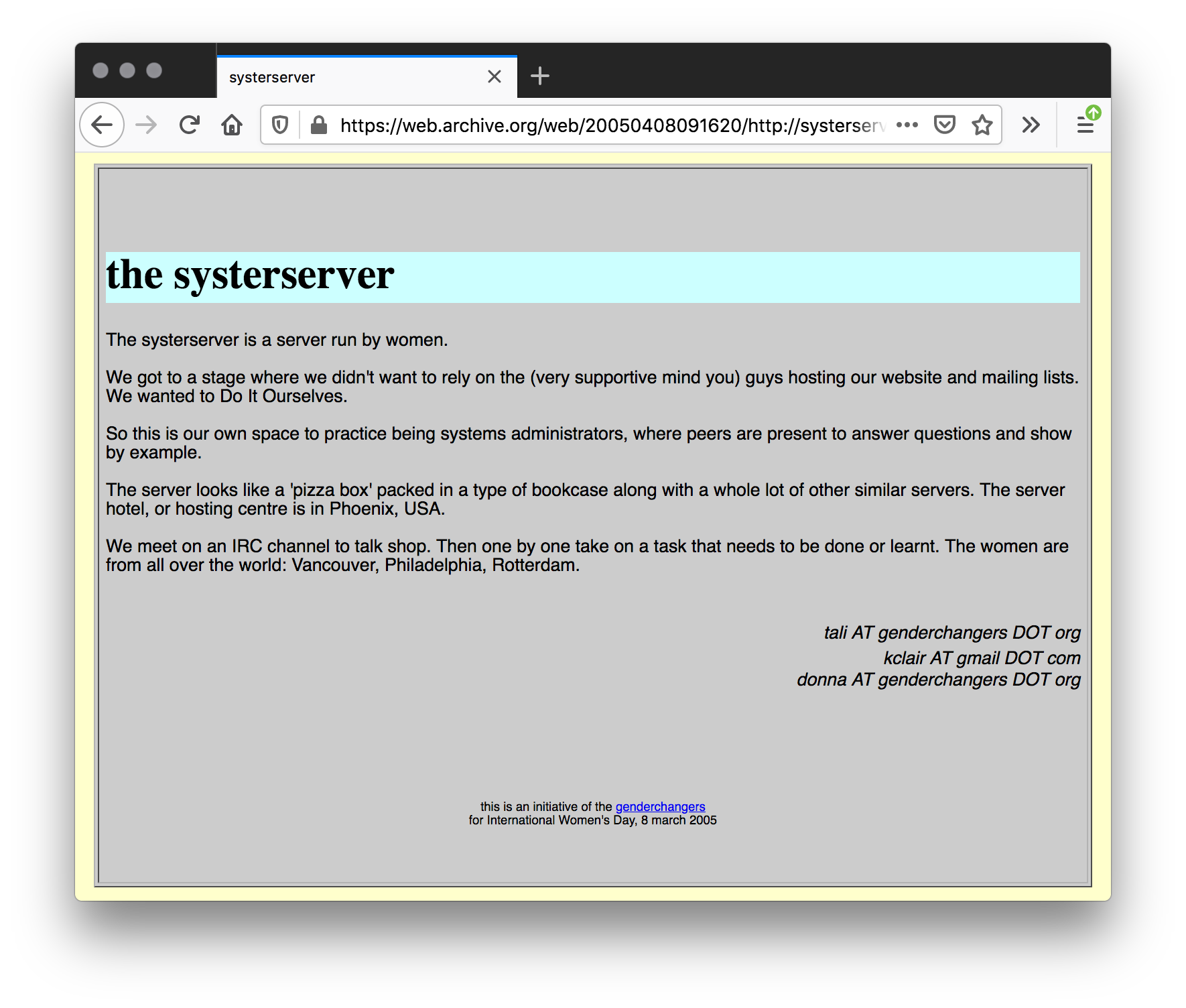
Wayback Machine, Apr 08, 2005; Screenshot, 2020, Firefox v76.0.1 on Mac OS 10.13.3; https://web.archive.org/web/20050408091620/http://systerserver.net/

“image of JEAN – server rack of SysterServer.net”, image from https://networkcultures.org/performanceofcode/2015/01/27/commoning-the-network-feminist-methodologies/
The systerserver is a server run by women.
We got to a stage where we didn’t want to rely on the (very supportive mind you) guys hosting our website and mailing lists. We wanted to Do It Ourselves [DIWO]. So this is our own space to practice being systems administrators, where peers are present to answer questions and show by example. The server looks like a “pizza box” packed in a type of bookcase along with a whole lot of other similar servers. The server hotel, or hosting center is in Phoenix, USA. We meet on an IRC channel to talk shop. Then one by one take on a task that needs to be done or learnt. The women are from all over the world: Vancouver, Philadelphia, Rotterdam.
2005, Genderchangers Academy, https://web.archive.org/web/20050408091620/http://systerserver.net/
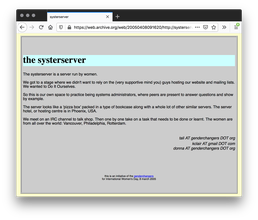
Wayback Machine, Apr 08, 2005; Screenshot, 2020, Firefox v76.0.1 on Mac OS 10.13.3; https://web.archive.org/web/20050408091620/http://systerserver.net/

“image of JEAN – server rack of SysterServer.net”, image from https://networkcultures.org/performanceofcode/2015/01/27/commoning-the-network-feminist-methodologies/
(294)
2005–
2020
TIC-as
Sulá Batsú
El objetivo principal de TIC-as es crear condiciones de empleo y trabajo de las mujeres rurales en el sector de las Tecnologías de la Información y Comunicación (TIC) en Costa Rica. TIC-as se preocupa por crear espacios óptimos para que las mujeres puedan insertarse de manera integral en la economía digital, enfocado en las mujeres jóvenes rurales que tengan el potencial para desarrollar sus emprendimientos basados en tecnología y que estos se orienten a la resolución de problemáticas sociales de sus comunidades.
The main objective of TIC-as is to create employment and working conditions for rural women in the Information and Communication Technologies (ICT) sector in Costa Rica. TIC-as is concerned with creating optimal spaces so that women can integrate in an integral way in the digital economy, focusing on young rural women who have the potential to develop their technology-based enterprises and orient these to the resolution of problems of their communities.
2005, Sulá Batsú, https://www.sulabatsu.com/ticas/ referred by Melissa Aguilar and Constanza Piña
Costa Rica
El objetivo principal de TIC-as es crear condiciones de empleo y trabajo de las mujeres rurales en el sector de las Tecnologías de la Información y Comunicación (TIC) en Costa Rica. TIC-as se preocupa por crear espacios óptimos para que las mujeres puedan insertarse de manera integral en la economía digital, enfocado en las mujeres jóvenes rurales que tengan el potencial para desarrollar sus emprendimientos basados en tecnología y que estos se orienten a la resolución de problemáticas sociales de sus comunidades.
The main objective of TIC-as is to create employment and working conditions for rural women in the Information and Communication Technologies (ICT) sector in Costa Rica. TIC-as is concerned with creating optimal spaces so that women can integrate in an integral way in the digital economy, focusing on young rural women who have the potential to develop their technology-based enterprises and orient these to the resolution of problems of their communities.
2005, Sulá Batsú, https://www.sulabatsu.com/ticas/ referred by Melissa Aguilar and Constanza Piña
Costa Rica
(295)
2005
Derechos Digitales [Digital Rights]
Flavio Tapia, Daniel Álvarez
Derechos Digitales es una organización de alcance latinoamericano, independiente y sin fines de lucro, fundada en 2005 y que tiene como objetivo fundamental el desarrollo, la defensa y la promoción de los derechos humanos en el entorno digital. Nuestra visión es contribuir hacia una sociedad latinoamericana más justa, inclusiva e igualitaria, en la cual Derechos Digitales participe, directamente y en coordinación con otras organizaciones, en la defensa de los derechos humanos en el entorno digital para que las tecnologías estén al servicio del desarrollo integral de las personas.
Derechos Digitales is a Latin American, independent and non-profit organization, founded in 2005 and whose main objective is the development, defense and promotion of human rights in the digital environment. Our vision is to contribute towards a more just, inclusive and egalitarian Latin American society, in which Digital Rights participates, directly and in coordination with other organizations, in the defense of human rights in the digital environment so that technologies are at the service of development integral of the people.
2005, Flavio Tapia and Daniel Álvarez, https://www.derechosdigitales.org/
Chile, Mexico
Derechos Digitales es una organización de alcance latinoamericano, independiente y sin fines de lucro, fundada en 2005 y que tiene como objetivo fundamental el desarrollo, la defensa y la promoción de los derechos humanos en el entorno digital. Nuestra visión es contribuir hacia una sociedad latinoamericana más justa, inclusiva e igualitaria, en la cual Derechos Digitales participe, directamente y en coordinación con otras organizaciones, en la defensa de los derechos humanos en el entorno digital para que las tecnologías estén al servicio del desarrollo integral de las personas.
Derechos Digitales is a Latin American, independent and non-profit organization, founded in 2005 and whose main objective is the development, defense and promotion of human rights in the digital environment. Our vision is to contribute towards a more just, inclusive and egalitarian Latin American society, in which Digital Rights participates, directly and in coordination with other organizations, in the defense of human rights in the digital environment so that technologies are at the service of development integral of the people.
2005, Flavio Tapia and Daniel Álvarez, https://www.derechosdigitales.org/
Chile, Mexico
(296)
2005
성차별 없는 ‘사이버 페미니즘’ [“Cyberfeminism” without Gender Discrimination]
Cho Ji-hye (조지혜)
가능성을 포기할 수 없다면 전략을 세워야 한다. 그 중 하나는 더욱 더 여성들의 대안적인 영토를 넓히는 것이다. 남녀평등의 분위기가 ‘기본’이 된 어떤 사이트를 직접 만들어낼 수도 있고 여성주의 사이트에서 경험으로 전해지는 삶의 내공을 나눠 받을 수도 있다. 또는 온라인 카페, 블로그, 지식 검색 등 사이버스페이스에서 이미 널리 사용되는 것을 여성주의 아이디어로 비틀어 볼 수도 있다. 이런 전환은 또 하나의 균열이 될 수 있지 않을까.
If you can’t give up the possibilities, you need to come up with a strategy. One of them is to expand the alternative territory of women even more. You can create a site where the atmosphere of gender equality has become the “basic,” or you can share the experience of life conveyed by experiences on a feminist site. Or you can twist the feminist idea of what is already widely used in cyberspace, such as online cafes, blogs, and knowledge search. Could this transition be another crack?
2005, 조지혜 [Cho Ji-hye], The Women’s News, May 12, 2005, https://www.womennews.co.kr/news/articleView.html?idxno=20977; referred by Soyoung Chong
South Korea
가능성을 포기할 수 없다면 전략을 세워야 한다. 그 중 하나는 더욱 더 여성들의 대안적인 영토를 넓히는 것이다. 남녀평등의 분위기가 ‘기본’이 된 어떤 사이트를 직접 만들어낼 수도 있고 여성주의 사이트에서 경험으로 전해지는 삶의 내공을 나눠 받을 수도 있다. 또는 온라인 카페, 블로그, 지식 검색 등 사이버스페이스에서 이미 널리 사용되는 것을 여성주의 아이디어로 비틀어 볼 수도 있다. 이런 전환은 또 하나의 균열이 될 수 있지 않을까.
If you can’t give up the possibilities, you need to come up with a strategy. One of them is to expand the alternative territory of women even more. You can create a site where the atmosphere of gender equality has become the “basic,” or you can share the experience of life conveyed by experiences on a feminist site. Or you can twist the feminist idea of what is already widely used in cyberspace, such as online cafes, blogs, and knowledge search. Could this transition be another crack?
2005, 조지혜 [Cho Ji-hye], The Women’s News, May 12, 2005, https://www.womennews.co.kr/news/articleView.html?idxno=20977; referred by Soyoung Chong
South Korea
(297)
2005
Aboriginal Territories in Cyberspace (AbTeC)
Skawennati, Jason Edward Lewis
Aboriginal Territories (AbTeC) in Cyberspace is an Aboriginally determined research-creation network whose goal is to ensure Indigenous presence in the web pages, online environments, video games, and virtual worlds that comprise cyberspace.
AbTeC’s roots lie with a project called CyberPowWow, a pioneering on-line gallery and chat space for contemporary Indigenous art. It was through CyberPowWow that we realized that, even on the Internet, Native people need a self-determined place to call home.
2005, Jason Edward Lewis and Skawennati, http://abtec.org/
Aboriginal Territories (AbTeC) in Cyberspace is an Aboriginally determined research-creation network whose goal is to ensure Indigenous presence in the web pages, online environments, video games, and virtual worlds that comprise cyberspace.
AbTeC’s roots lie with a project called CyberPowWow, a pioneering on-line gallery and chat space for contemporary Indigenous art. It was through CyberPowWow that we realized that, even on the Internet, Native people need a self-determined place to call home.
2005, Jason Edward Lewis and Skawennati, http://abtec.org/
(298)
2005
Violencia Sin Cuerpos [Violence Without Bodies]
Remedios Zafra
Violencia Sin Cuerpos es un proyecto web articulado como exposición de net.art en la que se plantean distintas lecturas en torno a la violencia de género en la red. Bajo la sugerencia implícita de que en un contexto postcorpóreo como Internet se siguen escondiendo viejas estrategias de dominación sexual, pero también nuevas condiciones para la producción de otras formas de violencia simbólica y real sobre la mujer. En Violencia Sin Cuerpos se dan cita estas cuestiones a partir de cuatro acercamientos a la situación del sexo y del género en la red, así como a la manera en que se puede repetir (o en algunos casos amplificar) una hegemonía patriarcal y, por efecto, sus formas de dominación en el ámbito digital.
Violence Without Bodies is a web project articulated as a net.art exhibition in which different readings about gender violence online are proposed. Under the implicit suggestion that in a post-corporeal context like the Internet, old strategies of sexual domination are still hidden, but also new conditions for the production of other forms of symbolic and real violence against women. In Violence Without Bodies these issues are brought together from four approaches to the situation of sex and gender in the network, as well as the way in which a patriarchal hegemony can be repeated (or in some cases amplified) and, by effect, their forms of domination in the digital sphere.
2005, Remedios Zafra, https://www.remedioszafra.net/carceldeamor/vsc/
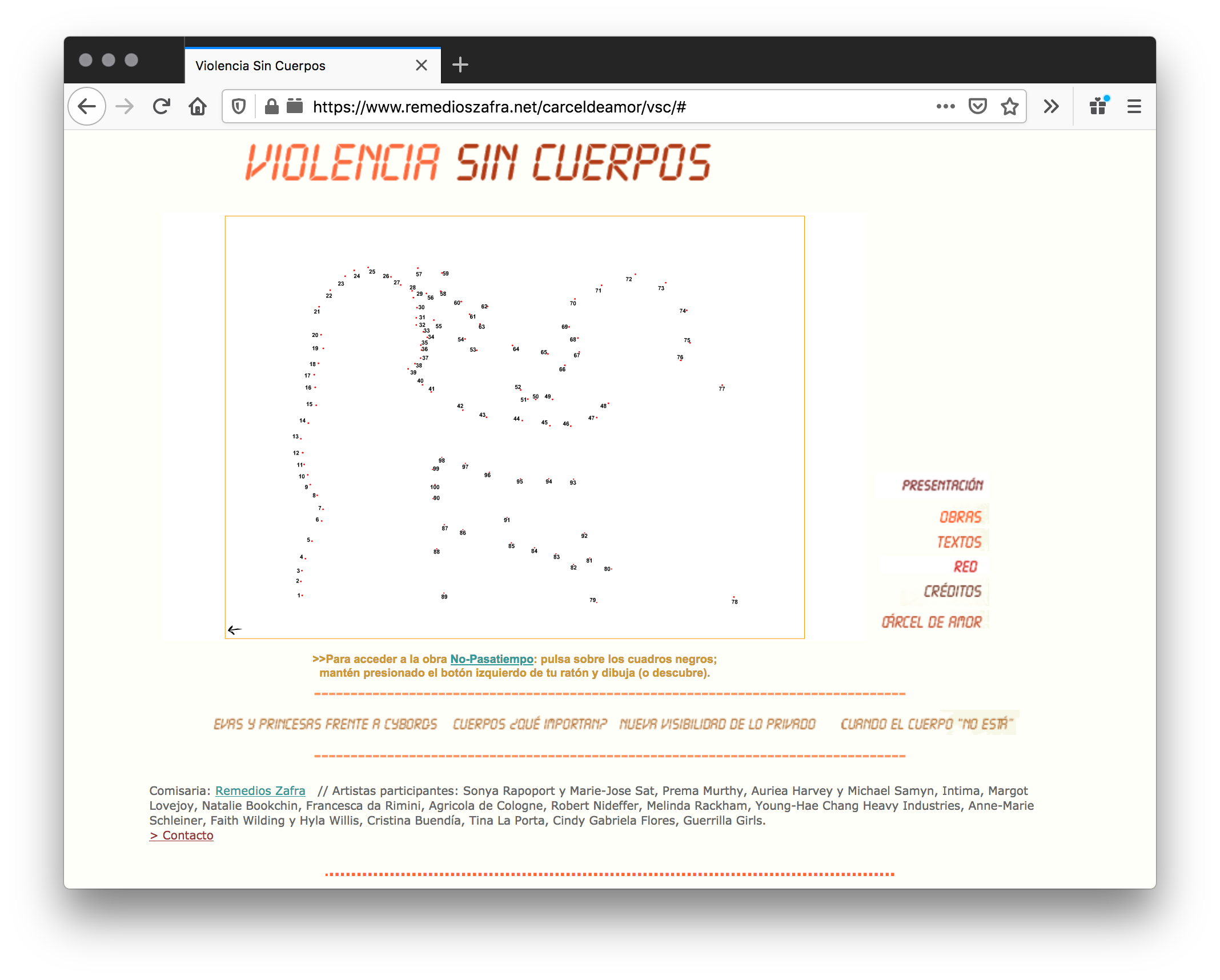
Screenshot, 2020, Firefox v76.0.1 on Mac OS 10.13.3; https://www.remedioszafra.net/carceldeamor/vsc/#
Violencia Sin Cuerpos es un proyecto web articulado como exposición de net.art en la que se plantean distintas lecturas en torno a la violencia de género en la red. Bajo la sugerencia implícita de que en un contexto postcorpóreo como Internet se siguen escondiendo viejas estrategias de dominación sexual, pero también nuevas condiciones para la producción de otras formas de violencia simbólica y real sobre la mujer. En Violencia Sin Cuerpos se dan cita estas cuestiones a partir de cuatro acercamientos a la situación del sexo y del género en la red, así como a la manera en que se puede repetir (o en algunos casos amplificar) una hegemonía patriarcal y, por efecto, sus formas de dominación en el ámbito digital.
Violence Without Bodies is a web project articulated as a net.art exhibition in which different readings about gender violence online are proposed. Under the implicit suggestion that in a post-corporeal context like the Internet, old strategies of sexual domination are still hidden, but also new conditions for the production of other forms of symbolic and real violence against women. In Violence Without Bodies these issues are brought together from four approaches to the situation of sex and gender in the network, as well as the way in which a patriarchal hegemony can be repeated (or in some cases amplified) and, by effect, their forms of domination in the digital sphere.
2005, Remedios Zafra, https://www.remedioszafra.net/carceldeamor/vsc/
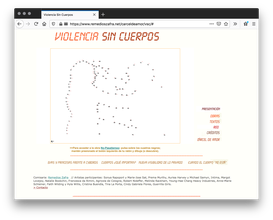
Screenshot, 2020, Firefox v76.0.1 on Mac OS 10.13.3; https://www.remedioszafra.net/carceldeamor/vsc/#
(299)
2005
Cyborg Hybrids
KC Adams
Cyborg Hybrids is a photo series that attempts to challenge our views towards mixed race classifications by using humorous text and imagery from two cultures. The Cyborg Hybrids are digital prints of Euro-Aboriginal artists who are forward thinkers and plugged in with technology. They follow the doctrine of Donna Harroway’s [sic] Cyborg Manifesto, which states that a cyborg is a creature in a technological, post-gender world free of traditional western stereotypes towards race and gender. I photographed artists who fit the Cyborg Hybrid criteria and had them wear white t-shirts with beaded text such as “AUTHORITY ON ALL ABORIGINAL ISSUES,” “INDIAN GIVER” and other slogans that would illustrate common Aboriginal stereotypical text. I also created white chokers for them to wear while I photographed them in stoic poses, mocking photographs of Aboriginal people from the 19th and early 20th century. I then digitally alter the photos to look like they could fit within a glamorous magazine. Their defiant poses challenge the viewer to try and classify their identity.
2005, KC Adams, https://www.kcadams.net/art/photography/Hybrids/hybridmain.html

“SCALPING IS IN MY BLOOD”, image from https://www.kcadams.net/art/photography/Hybrids/Banff/Hybrid_candice.html

“IT'S OK, I'M WHITE TOO”, image from https://www.kcadams.net/art/photography/Hybrids/Banff/Hybrid_Lori.html

“McMac”, image from https://www.kcadams.net/art/photography/Hybrids/PEI/Hybrid_Nancy.html

“HALFBREED”, image from https://www.kcadams.net/art/photography/Hybrids/Banff/Hybrid_Carla.html

“SPIRITUAL BY DEFAULT”, image from https://www.kcadams.net/art/photography/Hybrids/Banff/Hybrid_Yvonne.html

“DIRTY LITTLE INDIAN”, image from https://www.kcadams.net/art/photography/Hybrids/Brandon/Hybrid_Jenny.html
Cyborg Hybrids is a photo series that attempts to challenge our views towards mixed race classifications by using humorous text and imagery from two cultures. The Cyborg Hybrids are digital prints of Euro-Aboriginal artists who are forward thinkers and plugged in with technology. They follow the doctrine of Donna Harroway’s [sic] Cyborg Manifesto, which states that a cyborg is a creature in a technological, post-gender world free of traditional western stereotypes towards race and gender. I photographed artists who fit the Cyborg Hybrid criteria and had them wear white t-shirts with beaded text such as “AUTHORITY ON ALL ABORIGINAL ISSUES,” “INDIAN GIVER” and other slogans that would illustrate common Aboriginal stereotypical text. I also created white chokers for them to wear while I photographed them in stoic poses, mocking photographs of Aboriginal people from the 19th and early 20th century. I then digitally alter the photos to look like they could fit within a glamorous magazine. Their defiant poses challenge the viewer to try and classify their identity.
2005, KC Adams, https://www.kcadams.net/art/photography/Hybrids/hybridmain.html

“SCALPING IS IN MY BLOOD”, image from https://www.kcadams.net/art/photography/Hybrids/Banff/Hybrid_candice.html

“IT'S OK, I'M WHITE TOO”, image from https://www.kcadams.net/art/photography/Hybrids/Banff/Hybrid_Lori.html

“McMac”, image from https://www.kcadams.net/art/photography/Hybrids/PEI/Hybrid_Nancy.html

“HALFBREED”, image from https://www.kcadams.net/art/photography/Hybrids/Banff/Hybrid_Carla.html

“SPIRITUAL BY DEFAULT”, image from https://www.kcadams.net/art/photography/Hybrids/Banff/Hybrid_Yvonne.html

“DIRTY LITTLE INDIAN”, image from https://www.kcadams.net/art/photography/Hybrids/Brandon/Hybrid_Jenny.html
(300)
2005
Poesía, tecnología, mujer: Cíber/reflexiones [Poetry, technology, woman: Cyber/reflections]
Tina Escaja (Alm@ Pérez)
¿Qué tiene el nuevo milenio que ofrecer a las sucias masas sin módem? ¿Agua potable a gogó? La simulación tiene sus límites. ¿Están los artistas de las naciones oprimidas en una agenda paralela? ¿No será sólo selección natural? La creación de un nuevo hábitat de adaptación en el ciberespacio, una selección artificial, consciente, angloarrogante, que excluye las masas sin módem, sin inglés, que excluye a la mujer sin acceso, reproduce secuencias imperialistas, capitalistas, neocoloniales, selecciona a una élite de usuarios con acceso y medios, con dinero y formación, con opciones. […] Sin cabida. No entry. […] Las mujeres hispánicas en la red tejen, modulan y codifican. Muchas veces desde el intersticio de la tradición y la tecnología. Desde la élite del ciberteclado nombran las raíces y sus nodos. Un nuevo árbol se instaura. Se reb/velan.
What does the new millennium have to offer the filthy masses without a modem? Drinking water a gogó? Simulation has its limits. Are the artists of the oppressed nations on a parallel agenda? Isn’t it just natural selection? The creation of a new habitat of adaptation in cyberspace, an artificial, conscious, Anglo-arrogant selection, which excludes the masses without a modem, without English, which excludes women without access, reproduces imperialist, capitalist, neocolonial sequences, selects an elite of users with access and means, with money and training, with options. […] No place. No entry. […] Hispanic women on the web weave, modulate and code. Many times from the intersection of tradition and technology. From the elite of the cyber keyboard they name the roots and their nodes. A new tree is established. They reb/veil.
2005, Tina Escaja (Alm@ Pérez); excerpt from Tina Escaja, “Ciber/reflexiones,” Espacio Luke, http://www.espacioluke.com/2005/Diciembre2005/tina.html; submitted by Tina Escaja (Alm@ Pérez)
¿Qué tiene el nuevo milenio que ofrecer a las sucias masas sin módem? ¿Agua potable a gogó? La simulación tiene sus límites. ¿Están los artistas de las naciones oprimidas en una agenda paralela? ¿No será sólo selección natural? La creación de un nuevo hábitat de adaptación en el ciberespacio, una selección artificial, consciente, angloarrogante, que excluye las masas sin módem, sin inglés, que excluye a la mujer sin acceso, reproduce secuencias imperialistas, capitalistas, neocoloniales, selecciona a una élite de usuarios con acceso y medios, con dinero y formación, con opciones. […] Sin cabida. No entry. […] Las mujeres hispánicas en la red tejen, modulan y codifican. Muchas veces desde el intersticio de la tradición y la tecnología. Desde la élite del ciberteclado nombran las raíces y sus nodos. Un nuevo árbol se instaura. Se reb/velan.
What does the new millennium have to offer the filthy masses without a modem? Drinking water a gogó? Simulation has its limits. Are the artists of the oppressed nations on a parallel agenda? Isn’t it just natural selection? The creation of a new habitat of adaptation in cyberspace, an artificial, conscious, Anglo-arrogant selection, which excludes the masses without a modem, without English, which excludes women without access, reproduces imperialist, capitalist, neocolonial sequences, selects an elite of users with access and means, with money and training, with options. […] No place. No entry. […] Hispanic women on the web weave, modulate and code. Many times from the intersection of tradition and technology. From the elite of the cyber keyboard they name the roots and their nodes. A new tree is established. They reb/veil.
2005, Tina Escaja (Alm@ Pérez); excerpt from Tina Escaja, “Ciber/reflexiones,” Espacio Luke, http://www.espacioluke.com/2005/Diciembre2005/tina.html; submitted by Tina Escaja (Alm@ Pérez)
(301)
2006
The Body and the Screen: Theories of Internet Spectatorship
Michele White
Depictions of eager white male heterosexual computer users, which appear in Wired, other media sources, and Internet forums, are not surprising since the web sites for computer graphic designers, gamers, and programmers implicitly address these individuals and often include renders of sexualized female bodies for their pleasure. Computer-generated depictions of nearly naked women with large breasts, narrow waists, and puckered lips regularly appear on web sites for computer graphics software and related hardware. […] Employing the term “spectator,” when considering these Internet and computer settings, indicates how individuals are looking at representations, are acknowledged or displaced by visual and textual addresses and gain an understanding of the setting and their experiences through narratives and renderings. […] My use of the term is intended to suggest how Internet spectators continue to be rendered and regulated by technologies and representations and to reference apparatus and feminist psycho-analytic film theory, feminist art history, and visual cultural studies. As it is currently employed in film theory, spectator indicates “an artificial construct” that is produced and animated by the apparatus and cultural beliefs.
2006, Michele White (Cambridge, MA: MIT Press, 2006); excerpt pp. 5–6
https://mitpress.mit.edu/books/body-and-screen
Depictions of eager white male heterosexual computer users, which appear in Wired, other media sources, and Internet forums, are not surprising since the web sites for computer graphic designers, gamers, and programmers implicitly address these individuals and often include renders of sexualized female bodies for their pleasure. Computer-generated depictions of nearly naked women with large breasts, narrow waists, and puckered lips regularly appear on web sites for computer graphics software and related hardware. […] Employing the term “spectator,” when considering these Internet and computer settings, indicates how individuals are looking at representations, are acknowledged or displaced by visual and textual addresses and gain an understanding of the setting and their experiences through narratives and renderings. […] My use of the term is intended to suggest how Internet spectators continue to be rendered and regulated by technologies and representations and to reference apparatus and feminist psycho-analytic film theory, feminist art history, and visual cultural studies. As it is currently employed in film theory, spectator indicates “an artificial construct” that is produced and animated by the apparatus and cultural beliefs.
2006, Michele White (Cambridge, MA: MIT Press, 2006); excerpt pp. 5–6
https://mitpress.mit.edu/books/body-and-screen
(302)
2006
Artificial Knowing: Gender and the Thinking Machine
Alison Adam
I shall argue that a gendered vision of the world is inscribed in the technology of [artificial intelligence], albeit in a subtle way which must be uncovered or “de-scribed.” If a one-line definition is difficult enough, then so too is an appropriate title. By the title, “Artificial Knowing,” I am referring to the type of knowing which goes on in the “thinking machines,” i.e. the computer systems, simulations and robots which comprise the technical objects of AI. I intend no special commitment to realism in this. My aim is rather to set up an implicit contrast with what might be taken as the “real knowing” of human actors, especially the knowing of women, which I shall argue is left out of AI’s thinking machines.
1998, Alison Adam (New York: Routledge, 1998); excerpt p. 1; referred by Christine Meinders
I shall argue that a gendered vision of the world is inscribed in the technology of [artificial intelligence], albeit in a subtle way which must be uncovered or “de-scribed.” If a one-line definition is difficult enough, then so too is an appropriate title. By the title, “Artificial Knowing,” I am referring to the type of knowing which goes on in the “thinking machines,” i.e. the computer systems, simulations and robots which comprise the technical objects of AI. I intend no special commitment to realism in this. My aim is rather to set up an implicit contrast with what might be taken as the “real knowing” of human actors, especially the knowing of women, which I shall argue is left out of AI’s thinking machines.
1998, Alison Adam (New York: Routledge, 1998); excerpt p. 1; referred by Christine Meinders
(303)
2006
Then Isn’t It All Just “Hacktivism”?
Karim A. Remtulla
The approach of these cyberfeminist collectives to their hacktivisms is also postmodern in that it is decidedly contextual—”tactical” not “meta”—local, short term, limited in scope and duration, and partially “on the ground.” Their approach is concurrently virtual, connective, collaborative, and embodied, and in this way, these collectives do express some affinity to embodied notions propounded by second-wave feminists. As [Carolyn] Guertin contends, they “include a multitude of situated perspectives within the context of postmodern thinking”; “a new interest in culture that in turn gave rise to a whole new collectivity of subjectivities.” […]
As a male, visible-minority hacktivist, my response arose from a simple and innocent question: “What makes cyberfeminist hacktivism that contributes to the discourse on postfeminism so different from hacktivism in general?” Though I do not formally belong to any cyberfeminist collective, cannot I still contribute to the discourse on postfeminism through the “performance” of my hactivisms [sic] as one more transmutable “node” within a greater “matrix” against the voracious appetite of the ravenous “flesh machine”?
2006, Karim A. Remtulla, Electronic Book Review, March 17, 2006, https://electronicbookreview.com/essay/then-isnt-it-all-just-hacktivism/
The approach of these cyberfeminist collectives to their hacktivisms is also postmodern in that it is decidedly contextual—”tactical” not “meta”—local, short term, limited in scope and duration, and partially “on the ground.” Their approach is concurrently virtual, connective, collaborative, and embodied, and in this way, these collectives do express some affinity to embodied notions propounded by second-wave feminists. As [Carolyn] Guertin contends, they “include a multitude of situated perspectives within the context of postmodern thinking”; “a new interest in culture that in turn gave rise to a whole new collectivity of subjectivities.” […]
As a male, visible-minority hacktivist, my response arose from a simple and innocent question: “What makes cyberfeminist hacktivism that contributes to the discourse on postfeminism so different from hacktivism in general?” Though I do not formally belong to any cyberfeminist collective, cannot I still contribute to the discourse on postfeminism through the “performance” of my hactivisms [sic] as one more transmutable “node” within a greater “matrix” against the voracious appetite of the ravenous “flesh machine”?
2006, Karim A. Remtulla, Electronic Book Review, March 17, 2006, https://electronicbookreview.com/essay/then-isnt-it-all-just-hacktivism/
(304)
2006
GenderIT.org
Namita Aavriti, Kateruna Fialova, Dafne Sabanes Plou
The site is a think tank OF and FOR women’s rights, sexuality, sexual rights and internet rights activists, academics, journalists and advocates. We carry articles, news, podcasts, videos, comics and blogs on internet policy and cultures from a feminist and intersectional perspective, privileging voices and expressions from Africa, Asia, Latin America, Arabic-speaking countries and Eastern Europe.
GenderIT.org provides a space for reflection, influence and advocacy on internet policy in relation to the rights and demands of women, gender diverse people and issues related to sexuality.
2006, Namita Aavriti, Kateruna Fialova, and Dafne Sabanes Plou, http://GenderIT.org; referred by Jessica Dheere
The site is a think tank OF and FOR women’s rights, sexuality, sexual rights and internet rights activists, academics, journalists and advocates. We carry articles, news, podcasts, videos, comics and blogs on internet policy and cultures from a feminist and intersectional perspective, privileging voices and expressions from Africa, Asia, Latin America, Arabic-speaking countries and Eastern Europe.
GenderIT.org provides a space for reflection, influence and advocacy on internet policy in relation to the rights and demands of women, gender diverse people and issues related to sexuality.
2006, Namita Aavriti, Kateruna Fialova, and Dafne Sabanes Plou, http://GenderIT.org; referred by Jessica Dheere
(305)
2006
TechnoCapitalism Meets TechnoFeminism: Women and Technology in a Wireless World
Judy Wajcman
The co-production of gender and technical knowledge and artifacts does not end with the design and development process. STS studies stress that technologies are not fixed at the innovation stage but continue in their implementation and use. Different groups of people involved with a technology can have different understandings of that technology, and consumers or users can radically alter the meanings and deployments of technologies. So the same artifact means, and therefore largely is, different things to different women. For example, a young woman in the West experiences her silver cell phone as a liberating extension of her body. For her mother, it may primarily be a tool to keep track of her children. For women working as traders in Bangladesh, the mobile phone provides the means to run businesses selling communication services to other women. The point I want to emphasize here is that the social relations of production that underpin the mobile phone’s existence are opaque in all these cases.
2006, Judy Wajcman, Labor & Industry 16, no. 3 (April–May 2006): pp. 7–20; excerpt p. 16
https://www.are.na/block/7724348
The co-production of gender and technical knowledge and artifacts does not end with the design and development process. STS studies stress that technologies are not fixed at the innovation stage but continue in their implementation and use. Different groups of people involved with a technology can have different understandings of that technology, and consumers or users can radically alter the meanings and deployments of technologies. So the same artifact means, and therefore largely is, different things to different women. For example, a young woman in the West experiences her silver cell phone as a liberating extension of her body. For her mother, it may primarily be a tool to keep track of her children. For women working as traders in Bangladesh, the mobile phone provides the means to run businesses selling communication services to other women. The point I want to emphasize here is that the social relations of production that underpin the mobile phone’s existence are opaque in all these cases.
2006, Judy Wajcman, Labor & Industry 16, no. 3 (April–May 2006): pp. 7–20; excerpt p. 16
https://www.are.na/block/7724348
(306)
2006
function feminism
deb king
function feminism was created in conjunction with The Feminist Art Project, a series of events slated for 2007 (feministartproject.rutgers.edu). Placing cyberfeminism with historical and current perspectives of feminist history is exciting and is increasingly important as technological advances align themselves with the colonialist power structure, invading everyday life with applications of biogenetic engineering, surveillance and global capital. Demonstrating the scope of cyberfeminist practice without proceeding into a multi-year project is daunting, and this project can only be considered as a synopsis of the non-hierarchical, decentralized cyberfeminist practice.
2006, Deb King, https://web.archive.org/web/20070721092532/http://www.functionfeminism.com/index.html; excerpt from Rhizome, “function:feminism,” ArtBase, https://artbase.rhizome.org/wiki/Q4145
Editor’s Note: function:feminism includes a colon, but this was removed in the title because of the markdown required for the Cyberfeminism Index website.

Wayback Machine, July 21, 2007; Screenshot, 2020, Firefox v76.0.1 on Mac OS 10.13.3; https://web.archive.org/web/20070721092532/http://www.functionfeminism.com/index.html

Wayback Machine, July 21, 2007; Screenshot, 2020, Firefox v76.0.1 on Mac OS 10.13.3; https://web.archive.org/web/20070721092546/http://www.functionfeminism.com/timeline.html
function feminism was created in conjunction with The Feminist Art Project, a series of events slated for 2007 (feministartproject.rutgers.edu). Placing cyberfeminism with historical and current perspectives of feminist history is exciting and is increasingly important as technological advances align themselves with the colonialist power structure, invading everyday life with applications of biogenetic engineering, surveillance and global capital. Demonstrating the scope of cyberfeminist practice without proceeding into a multi-year project is daunting, and this project can only be considered as a synopsis of the non-hierarchical, decentralized cyberfeminist practice.
2006, Deb King, https://web.archive.org/web/20070721092532/http://www.functionfeminism.com/index.html; excerpt from Rhizome, “function:feminism,” ArtBase, https://artbase.rhizome.org/wiki/Q4145
Editor’s Note: function:feminism includes a colon, but this was removed in the title because of the markdown required for the Cyberfeminism Index website.
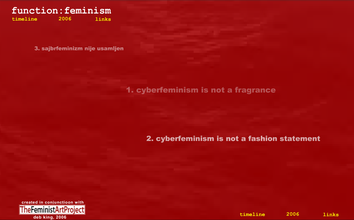
Wayback Machine, July 21, 2007; Screenshot, 2020, Firefox v76.0.1 on Mac OS 10.13.3; https://web.archive.org/web/20070721092532/http://www.functionfeminism.com/index.html

Wayback Machine, July 21, 2007; Screenshot, 2020, Firefox v76.0.1 on Mac OS 10.13.3; https://web.archive.org/web/20070721092546/http://www.functionfeminism.com/timeline.html
(307)
2006
¡Dominemos la Tecnología! [Take Back The Tech!]
¡Dominemos la tecnología! es un llamado a todas las personas, sobre todo mujeres y niñas, a tomar el control de la tecnología para terminar con la violencia contra las mujeres.
¡Dominemos la tecnología! comenzó en 2006, lanzado por el Programa de derechos de las mujeres de la Asociación para el Progreso de las Comunicaciones (APC) y se ha convertido en un movimiento muy diverso de individuos, organizaciones, colectivos y comunidades. Es resultado de documentos de investigación publicados en 2005 que analizaban la conexión entre las TIC y la violencia contra las mujeres, asunto que recibía muy poca atención y sobre el cual se debatía muy poco en ese momento. Luego de compartir los resultados de la investigación con activistas por los derechos de las mujeres y los derechos de comunicación en diferentes espacios, APC descubrió que se trataba de un tema clave que requería mayor atención y un compromiso más profundo.
Take Back The Tech! is a call to everyone, especially women and girls, to take control of technology to end violence against women. It’s a global, collaborative campaign project that highlights the problem of tech-related violence against women, together with research and solutions from different parts of the world. The campaign offers safety roadmaps and information and provides an avenue for taking action. Take Back the Tech! leads several campaigns at various points in the year, but our biggest annual campaign takes place during 16 Days of Activism Against Gender-Based Violence (25 Nov–10 Dec).
During campaigns, Take Back the Tech! announces actions that combine creative and strategic use of information and communication technology (ICT), with the issue of VAW. Campaigners organise actions that respond to their local priorities, such as workshops on online safety, media monitoring on rape reporting, solidarity actions on the streets and in online spaces and discussions on women’s right to privacy.
2006, https://www.takebackthetech.net/es; excerpt from “Acerca de ¡Dominemos la Tecnología!” ¡Dominemos la Tecnología! https://takebackthetech.net/es/acerca-de-%C2%A1dominemos-la-tecnolog%C3%ADa; in English as “About Take Back the Tech!” Take Back the Tech! https://takebackthetech.net/about

¡Dominemos la tecnología! logo, https://www.takebackthetech.net/es
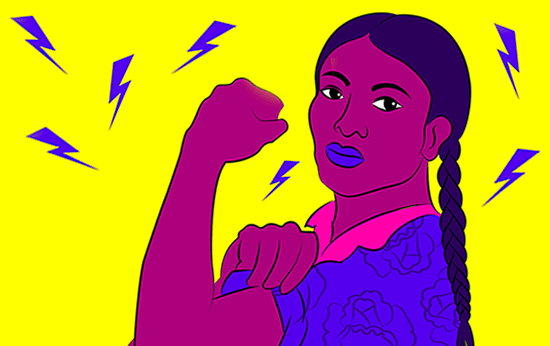
Artifact from https://www.takebackthetech.net/es

Artifact from https://www.takebackthetech.net/copyleft

Artifact from Wayback Machine, Dec 18, 2006, https://web.archive.org/web/20061218055005/http://www.takebackthetech.net/index.php

Masthead from Wayback Machine, Dec 18, 2006, https://web.archive.org/web/20061218055005/http://www.takebackthetech.net/index.php
¡Dominemos la tecnología! es un llamado a todas las personas, sobre todo mujeres y niñas, a tomar el control de la tecnología para terminar con la violencia contra las mujeres.
¡Dominemos la tecnología! comenzó en 2006, lanzado por el Programa de derechos de las mujeres de la Asociación para el Progreso de las Comunicaciones (APC) y se ha convertido en un movimiento muy diverso de individuos, organizaciones, colectivos y comunidades. Es resultado de documentos de investigación publicados en 2005 que analizaban la conexión entre las TIC y la violencia contra las mujeres, asunto que recibía muy poca atención y sobre el cual se debatía muy poco en ese momento. Luego de compartir los resultados de la investigación con activistas por los derechos de las mujeres y los derechos de comunicación en diferentes espacios, APC descubrió que se trataba de un tema clave que requería mayor atención y un compromiso más profundo.
Take Back The Tech! is a call to everyone, especially women and girls, to take control of technology to end violence against women. It’s a global, collaborative campaign project that highlights the problem of tech-related violence against women, together with research and solutions from different parts of the world. The campaign offers safety roadmaps and information and provides an avenue for taking action. Take Back the Tech! leads several campaigns at various points in the year, but our biggest annual campaign takes place during 16 Days of Activism Against Gender-Based Violence (25 Nov–10 Dec).
During campaigns, Take Back the Tech! announces actions that combine creative and strategic use of information and communication technology (ICT), with the issue of VAW. Campaigners organise actions that respond to their local priorities, such as workshops on online safety, media monitoring on rape reporting, solidarity actions on the streets and in online spaces and discussions on women’s right to privacy.
2006, https://www.takebackthetech.net/es; excerpt from “Acerca de ¡Dominemos la Tecnología!” ¡Dominemos la Tecnología! https://takebackthetech.net/es/acerca-de-%C2%A1dominemos-la-tecnolog%C3%ADa; in English as “About Take Back the Tech!” Take Back the Tech! https://takebackthetech.net/about

¡Dominemos la tecnología! logo, https://www.takebackthetech.net/es
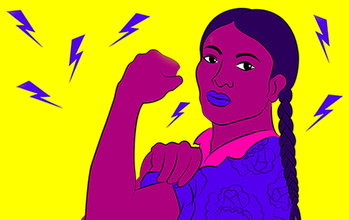
Artifact from https://www.takebackthetech.net/es

Artifact from https://www.takebackthetech.net/copyleft

Artifact from Wayback Machine, Dec 18, 2006, https://web.archive.org/web/20061218055005/http://www.takebackthetech.net/index.php

Masthead from Wayback Machine, Dec 18, 2006, https://web.archive.org/web/20061218055005/http://www.takebackthetech.net/index.php
(308)
2006
The Wretched of the Gulf: Racism, Technological Dramas, and Black Politics of Technology
Rayvon Fouché
By examining black experiences with technology as technological dramas, a new set of questions to explore technologies and African American lives emerges. Questions contemplating how technologies have been ‘raced’ throughout American history, as well as how to understand and see African American technological agency from a black perspective, are essential for a broader development of a black politics of technology. But more importantly, a discussion can begin about how a black politics of technology can produce black informed counter artifacts.
[M]achines (as Norbert Weiner said) are an extension of their inventor-creators. That is not simple once you think. Machines, the entire technology of the West, is just that, the technology of the West … Political power is also the power to create—not only what you will—but to be freed to go wherever you can go—(mentally and physically as well). Black creation—creation powered by the Black ethos brings very special results.
2006, Rayvon Fouché, The Black Scholar 36, no. 4 (Winter 2006): pp. 7–12; excerpt pp. 9–10
https://www.are.na/block/8108918 https://www.are.na/block/8108959
By examining black experiences with technology as technological dramas, a new set of questions to explore technologies and African American lives emerges. Questions contemplating how technologies have been ‘raced’ throughout American history, as well as how to understand and see African American technological agency from a black perspective, are essential for a broader development of a black politics of technology. But more importantly, a discussion can begin about how a black politics of technology can produce black informed counter artifacts.
[M]achines (as Norbert Weiner said) are an extension of their inventor-creators. That is not simple once you think. Machines, the entire technology of the West, is just that, the technology of the West … Political power is also the power to create—not only what you will—but to be freed to go wherever you can go—(mentally and physically as well). Black creation—creation powered by the Black ethos brings very special results.
2006, Rayvon Fouché, The Black Scholar 36, no. 4 (Winter 2006): pp. 7–12; excerpt pp. 9–10
https://www.are.na/block/8108918 https://www.are.na/block/8108959
(309)
2006
Radio Zapatista
Radio Zapatista is a free, autonomous, alternative media collective made up of independent communicators who believe in the possibility of building a Mexico outside of the capitalist logic of profit and competition, and many worlds with justice, freedom, and dignity. Our perspective is from below and to the left, inspired by the example of struggle and construction of the zapatista peoples and the EZLN, as well as struggles and rebellions from many other geographies.
The collective was born in the San Francisco Bay Area in 2006, in the context of the Sixth Declaration of the Lacandon Jungle and the Other Campaign. Before that, Radio Zapatista was a monthly program broadcast on Pacifica Radio, organized by a committee in solidarity with the zapatista communities in Chiapas. With the challenges, hopes, and provocations posed by the Sixth Declaration, a group of adherentes, mostly migrants and chicanos, decided to create the collective. With time, some members migrated to Mexico, others left, others joined, and today we are in several geographies of that country, from where we produce reports, audios, news, and programs on the struggles inspired by the zapatistas in Mexico and the world.
2006, https://radiozapatista.org/
Radio Zapatista is a free, autonomous, alternative media collective made up of independent communicators who believe in the possibility of building a Mexico outside of the capitalist logic of profit and competition, and many worlds with justice, freedom, and dignity. Our perspective is from below and to the left, inspired by the example of struggle and construction of the zapatista peoples and the EZLN, as well as struggles and rebellions from many other geographies.
The collective was born in the San Francisco Bay Area in 2006, in the context of the Sixth Declaration of the Lacandon Jungle and the Other Campaign. Before that, Radio Zapatista was a monthly program broadcast on Pacifica Radio, organized by a committee in solidarity with the zapatista communities in Chiapas. With the challenges, hopes, and provocations posed by the Sixth Declaration, a group of adherentes, mostly migrants and chicanos, decided to create the collective. With time, some members migrated to Mexico, others left, others joined, and today we are in several geographies of that country, from where we produce reports, audios, news, and programs on the struggles inspired by the zapatistas in Mexico and the world.
2006, https://radiozapatista.org/
(310)
2006
Wêpinasowina (Prayer Flags in Cyberspace)
Cheryl L’Hirondelle
My good experiences are many: from working with grandmothers on reserve, giving them their first hands on tours of a computer and the internet, (97) to having long-lost adopted friends’ and families’ children email me to make contact, to being invited via email to other parts of the world to present my work, share this Cree worldview I am dedicated to and be enabled to strengthen the ever-widening web of relations all over our mother, the earth. […]
From my years and experience living in northern Saskatchewan with the Naytowhow family, nêhiyawin (cree worldview) is a process of many ceremonial and social societies that observe, celebrate our talents and gifts, and enact our ongoing relationship with nature and the phenomenal connections that exist with the natural and spiritual worlds. Somewhat similar to Tibetan observances, the hanging of prayer flags is to make contact with the spiritual realm. Wêpinâsowina is my attempt to say that even in cyberspace—our ancestors and the spirits are witnessing us and that guidance is possible if we use our words in a good way.
2006, Cheryl L’Hirondelle, https://web.archive.org/web/20070103153147/http://www.wepinasowina.net/

Screenshot, 2020, Firefox v76.0.1 on Mac OS 10.13.3; https://web.archive.org/web/20070103153147/http://www.wepinasowina.net/
My good experiences are many: from working with grandmothers on reserve, giving them their first hands on tours of a computer and the internet, (97) to having long-lost adopted friends’ and families’ children email me to make contact, to being invited via email to other parts of the world to present my work, share this Cree worldview I am dedicated to and be enabled to strengthen the ever-widening web of relations all over our mother, the earth. […]
From my years and experience living in northern Saskatchewan with the Naytowhow family, nêhiyawin (cree worldview) is a process of many ceremonial and social societies that observe, celebrate our talents and gifts, and enact our ongoing relationship with nature and the phenomenal connections that exist with the natural and spiritual worlds. Somewhat similar to Tibetan observances, the hanging of prayer flags is to make contact with the spiritual realm. Wêpinâsowina is my attempt to say that even in cyberspace—our ancestors and the spirits are witnessing us and that guidance is possible if we use our words in a good way.
2006, Cheryl L’Hirondelle, https://web.archive.org/web/20070103153147/http://www.wepinasowina.net/

Screenshot, 2020, Firefox v76.0.1 on Mac OS 10.13.3; https://web.archive.org/web/20070103153147/http://www.wepinasowina.net/
(311)
2006
Series of Tubes
Steph Alarcón
“They want to deliver vast amounts of information over the internet. And again, the internet is not something you just dump something on. It’s not a truck.
It’s a series of tubes.
And if you don’t understand those tubes can be filled and if they are filled, when you put your message in, it gets in line and it’s going to be delayed by anyone that puts into that tube enormous amounts of material, enormous amounts of material.”
2006, Steph Alarcón, https://boingboing.net/2006/07/23/best-series-of-tubes.html; quotation by Senator Ted Stevens from “Your Own Personal Internet,” Wired, June 30, 2006, https://www.wired.com/2006/06/your-own-person/; submitted by Christina Dunbar-Hester
Editor’s Note: In an email, Christina Dunbar-Hester described how feminist hackers wore the“Series of Tubes” shirts to the 2006 H.O.P.E. (Hackers on Planet Earth) conference to protest the gender ratio. It was a parody of Senator Ted Stevens’s poor analogy of the internet. —MS
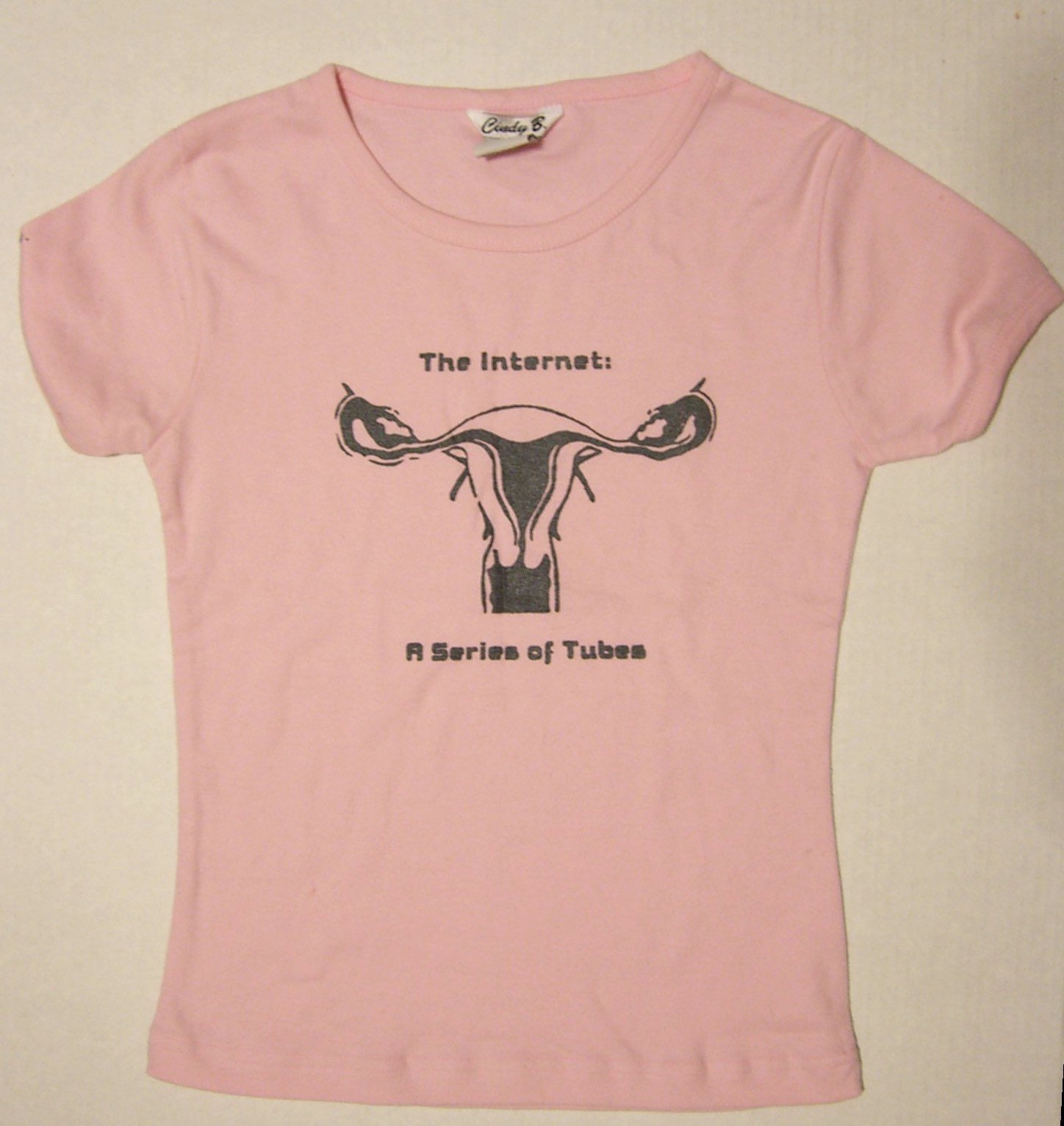
image via email by Christina Dunbar-Hester
“They want to deliver vast amounts of information over the internet. And again, the internet is not something you just dump something on. It’s not a truck.
It’s a series of tubes.
And if you don’t understand those tubes can be filled and if they are filled, when you put your message in, it gets in line and it’s going to be delayed by anyone that puts into that tube enormous amounts of material, enormous amounts of material.”
2006, Steph Alarcón, https://boingboing.net/2006/07/23/best-series-of-tubes.html; quotation by Senator Ted Stevens from “Your Own Personal Internet,” Wired, June 30, 2006, https://www.wired.com/2006/06/your-own-person/; submitted by Christina Dunbar-Hester
Editor’s Note: In an email, Christina Dunbar-Hester described how feminist hackers wore the“Series of Tubes” shirts to the 2006 H.O.P.E. (Hackers on Planet Earth) conference to protest the gender ratio. It was a parody of Senator Ted Stevens’s poor analogy of the internet. —MS
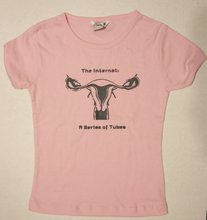
image via email by Christina Dunbar-Hester
(312)
2006
Grrls, Chicks, Sisters & Squaws: Les citoyennes du Cyberspace
Skawennati
This new “final frontier” we call cyberspace is expanding every minute, thronging with avatars and activists, grrls and geeks, Xenas and xenophobes, all industriously carving out their own corners. As we gather on-line to find information, exchange stories, play games, imagine, complain and critique, we begin to affect the “netscape.” But can our participation affect the real world, too?
This virtually oriented exhibition presents examples from a spectrum of cyberactivism undertaken by women. Using a range of digital techniques, such as hacking, modding, graphic design, web design, and database programming, the projects address an equally diverse range of issues: intellectual property, anti-corporatism, First Nations/non-Native relations, faith and voyeurism. Through their works, the artists of Citoyennes.net present us with scenarios from nearby parallel universes that give us fresh perspectives on this one, as well as ideas and methods as to how, if we so desire, we can change it.
2006, Skawennati, https://www.datcha.ca/grrls/
This new “final frontier” we call cyberspace is expanding every minute, thronging with avatars and activists, grrls and geeks, Xenas and xenophobes, all industriously carving out their own corners. As we gather on-line to find information, exchange stories, play games, imagine, complain and critique, we begin to affect the “netscape.” But can our participation affect the real world, too?
This virtually oriented exhibition presents examples from a spectrum of cyberactivism undertaken by women. Using a range of digital techniques, such as hacking, modding, graphic design, web design, and database programming, the projects address an equally diverse range of issues: intellectual property, anti-corporatism, First Nations/non-Native relations, faith and voyeurism. Through their works, the artists of Citoyennes.net present us with scenarios from nearby parallel universes that give us fresh perspectives on this one, as well as ideas and methods as to how, if we so desire, we can change it.
2006, Skawennati, https://www.datcha.ca/grrls/
(313)
2007
Digitizing Race: Visual Cultures of the Internet
Lisa Nakamura
The Internet is a visual technology, a protocol for seeing that is interfaced and networked in ways that produce a particular set of racial formations. These formations arose in a specific historical period: the premillennial neoliberal moment, when race disappeared from public and governmental discourse while at the same time policies regarding Internet infrastructures and access were being formed. […] By examining a range of new digital production practices by creators of minority popular visual cultures on the Internet, I have hoped to give a sense of how this group of users sees, rather than merely how they are seen or represented, what they are making as well as what they are using, what they are doing a well as what they are being. […] Yet still, that skin continues to digital articulate itself in its difference, perhaps for the first time in a public form that is as yet much less regulated than other media spaces for visual representation. In defiance of public discourse that says that race doesn’t exist and doesn’t matter, either scientifically or practically, users continue to make avatars, Web sites, quizzes, moving image sequences, and petitions that say it does, and it does.
2008, Lisa Nakamura (Minneapolis, MN: University of Minnesota Press, 2008); excerpt pp. 202, 208–209
https://www.upress.umn.edu/book-division/books/digitizing-race
The Internet is a visual technology, a protocol for seeing that is interfaced and networked in ways that produce a particular set of racial formations. These formations arose in a specific historical period: the premillennial neoliberal moment, when race disappeared from public and governmental discourse while at the same time policies regarding Internet infrastructures and access were being formed. […] By examining a range of new digital production practices by creators of minority popular visual cultures on the Internet, I have hoped to give a sense of how this group of users sees, rather than merely how they are seen or represented, what they are making as well as what they are using, what they are doing a well as what they are being. […] Yet still, that skin continues to digital articulate itself in its difference, perhaps for the first time in a public form that is as yet much less regulated than other media spaces for visual representation. In defiance of public discourse that says that race doesn’t exist and doesn’t matter, either scientifically or practically, users continue to make avatars, Web sites, quizzes, moving image sequences, and petitions that say it does, and it does.
2008, Lisa Nakamura (Minneapolis, MN: University of Minnesota Press, 2008); excerpt pp. 202, 208–209
https://www.upress.umn.edu/book-division/books/digitizing-race
(314)
2007
Cyberfeminism in Northern Lights: Digital Media and Gender in a Nordic Context
Malin Sveningsson Elm, Jenny Sundén
What, then, are these experiences and knowledge that make us different? What does it mean to study supposedly global media phenomena from a Nordic perspective? In which ways could a Nordic feminist perspective on digital media make a difference in relation to dominant research traditions? What would be particular and unique about Nordic cyberfeminism compared to the “unmarked” version of cyberfeminism dominating the field today? These are questions that the contributors to this book set out to address. This introductory chapter starts out with a partial history of cyberfeminism, leading to a call for alternative, empirically grounded cyberfeminist perspectives and projects that make explicit their own cultural premises. Secondly, the chapter maps out the specificities of a Nordic perspective, starting with a brief historical overview of linguistic contiguities and shared traits among the Nordic countries. This is followed by some remarks on gender equality, state feminism, and technological development, [as well as] tangible examples of what Nordic cyberfeminism can look like…
2007, Malin Sveningsson Elm and Jenny Sundén, eds. (Newcastle-upon-Tyne, UK: Cambridge Scholars Pub., 2007); excerpt from Malin Sveningsson Elm and Jenny Sundén, introduction to Sveningsson Elm and Sundén, Cyberfeminism in Northern Lights, pp. 2–3
What, then, are these experiences and knowledge that make us different? What does it mean to study supposedly global media phenomena from a Nordic perspective? In which ways could a Nordic feminist perspective on digital media make a difference in relation to dominant research traditions? What would be particular and unique about Nordic cyberfeminism compared to the “unmarked” version of cyberfeminism dominating the field today? These are questions that the contributors to this book set out to address. This introductory chapter starts out with a partial history of cyberfeminism, leading to a call for alternative, empirically grounded cyberfeminist perspectives and projects that make explicit their own cultural premises. Secondly, the chapter maps out the specificities of a Nordic perspective, starting with a brief historical overview of linguistic contiguities and shared traits among the Nordic countries. This is followed by some remarks on gender equality, state feminism, and technological development, [as well as] tangible examples of what Nordic cyberfeminism can look like…
2007, Malin Sveningsson Elm and Jenny Sundén, eds. (Newcastle-upon-Tyne, UK: Cambridge Scholars Pub., 2007); excerpt from Malin Sveningsson Elm and Jenny Sundén, introduction to Sveningsson Elm and Sundén, Cyberfeminism in Northern Lights, pp. 2–3
(315)
2007
Stitch’nBitch: Cyberfeminism, a Third Place and the New Materiality
Julie Wolfram Cox, Stella Marie Minahan
We discuss the emergence of a new craft movement known as Stitch’nBitch. Prevalent around the globe, particularly among women, this movement is based locally in places such as hotels and cafes, and virtually using the internet. The women meet to knit, stitch and talk. The groups use new technologies as an enabler and resource exchange. At the same time, their presence can be seen, in part, as a negative response to major political, social and technological changes including globalization, terrorism, damage to the environment and the dislocation of the Information Society. We introduce five themes to assist in the development of a research agenda into this new form of material culture, discussing remedial, progressive, resistance, nostalgic and ironic possibilities. Each is considered in terms of their respective foci on community, cyberfeminism, craft, conservation and comment.
2007, Stella Minahan and Julie Wolfram Cox, Journal of Material Culture 12, no. 1 (2007): pp. 5–21; excerpt from abstract
We discuss the emergence of a new craft movement known as Stitch’nBitch. Prevalent around the globe, particularly among women, this movement is based locally in places such as hotels and cafes, and virtually using the internet. The women meet to knit, stitch and talk. The groups use new technologies as an enabler and resource exchange. At the same time, their presence can be seen, in part, as a negative response to major political, social and technological changes including globalization, terrorism, damage to the environment and the dislocation of the Information Society. We introduce five themes to assist in the development of a research agenda into this new form of material culture, discussing remedial, progressive, resistance, nostalgic and ironic possibilities. Each is considered in terms of their respective foci on community, cyberfeminism, craft, conservation and comment.
2007, Stella Minahan and Julie Wolfram Cox, Journal of Material Culture 12, no. 1 (2007): pp. 5–21; excerpt from abstract
(316)
2007–
2013
moddr_
sister0
moddr is a post-Rotterdam media/hacker/co-working cyberspace and DIY/FOSS/OSHW fablab for artgeeks, and a former part of the venue WORM: Institute for Avantgardistic Recreation. Since being founded in 2007 by alumni of the Piet Zwart Institute (department of “Media Design”) they host and promote young local and international talent with a focus on the artistic modification (“modding”) of contemporary and emerging technology. moddr represents a critical attitude in our “new”-media landscape through spawning and development of artistic projects, workshop series, lectures, exhibitions and of course good parties.
2007, sister0, http://moddr.net/
Rotterdam

moddr logo
moddr is a post-Rotterdam media/hacker/co-working cyberspace and DIY/FOSS/OSHW fablab for artgeeks, and a former part of the venue WORM: Institute for Avantgardistic Recreation. Since being founded in 2007 by alumni of the Piet Zwart Institute (department of “Media Design”) they host and promote young local and international talent with a focus on the artistic modification (“modding”) of contemporary and emerging technology. moddr represents a critical attitude in our “new”-media landscape through spawning and development of artistic projects, workshop series, lectures, exhibitions and of course good parties.
2007, sister0, http://moddr.net/
Rotterdam

moddr logo
(317)
2007
PyLadies
We are an international mentorship group with a focus on helping more women become active participants and leaders in the Python open-source community. Our mission is to promote, educate and advance a diverse Python community through outreach, education, conferences, events and social gatherings. PyLadies also aims to provide a friendly support network for women and a bridge to the larger Python world. Anyone with an interest in Python is encouraged to participate.
2007, https://www.pyladies.com/; referred by Sasha Costanza-Chock
global
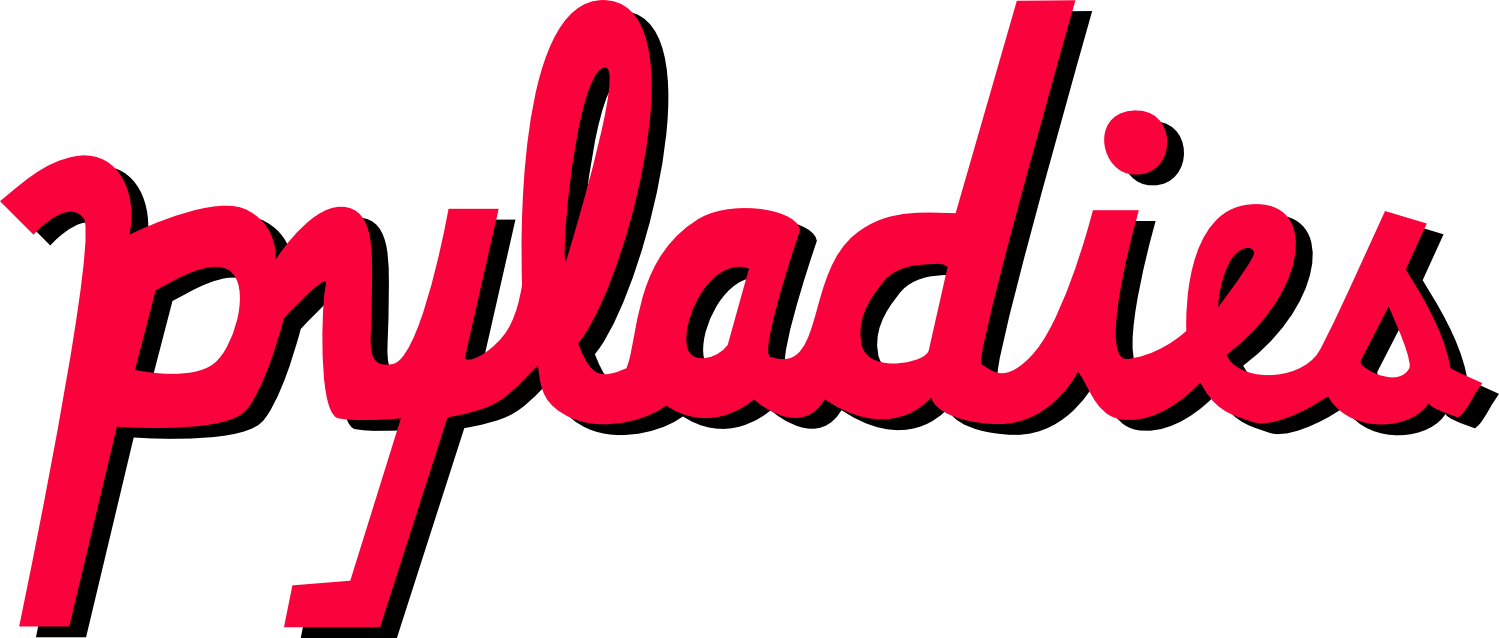
PyLadies logo
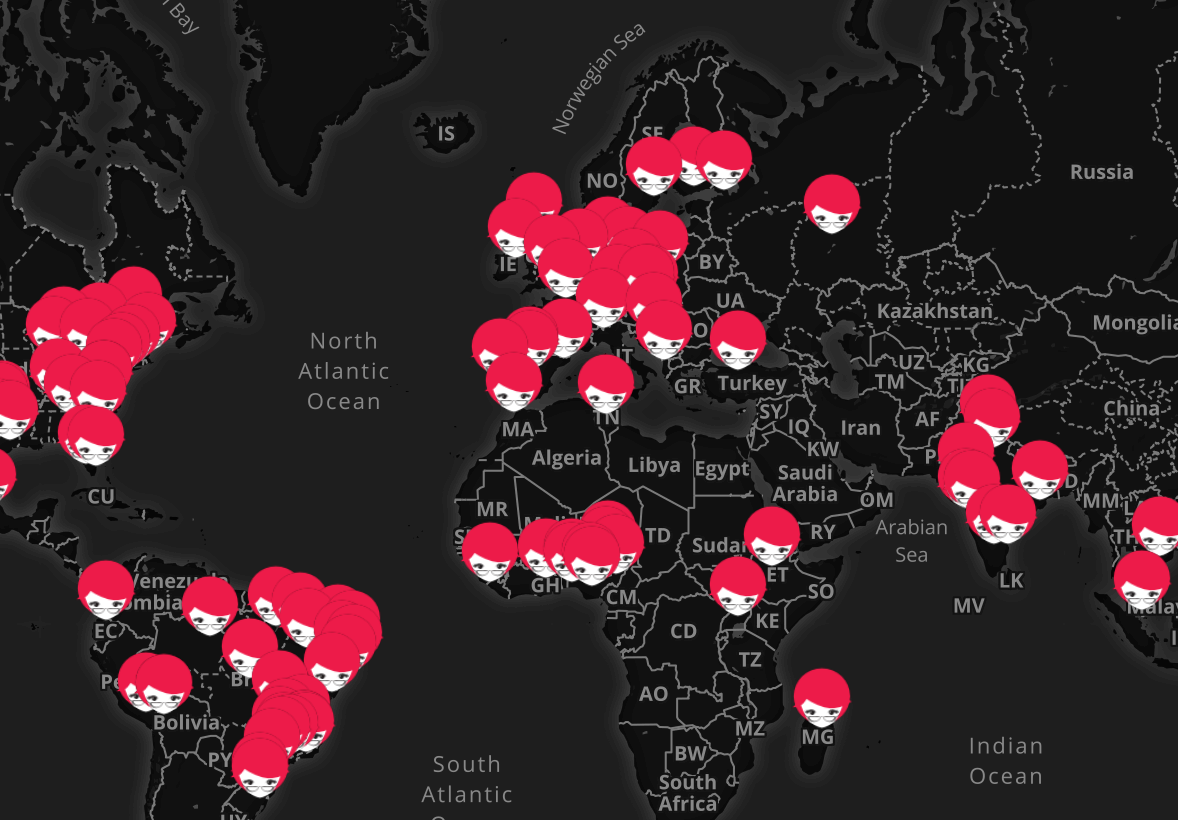
Screenshot, 2020, Firefox v76.0.1 on Mac OS 10.13.3; https://www.pyladies.com/locations/
We are an international mentorship group with a focus on helping more women become active participants and leaders in the Python open-source community. Our mission is to promote, educate and advance a diverse Python community through outreach, education, conferences, events and social gatherings. PyLadies also aims to provide a friendly support network for women and a bridge to the larger Python world. Anyone with an interest in Python is encouraged to participate.
2007, https://www.pyladies.com/; referred by Sasha Costanza-Chock
global
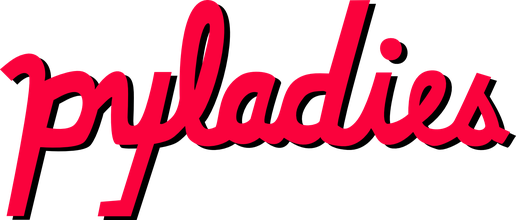
PyLadies logo
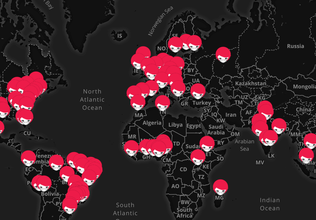
Screenshot, 2020, Firefox v76.0.1 on Mac OS 10.13.3; https://www.pyladies.com/locations/
(318)
2007
D/t\P disturb.the.peace [angry women]
Jess Loseby
Disturb.the.Peace [angry woman] will be aimed at creating a collaborative net-based installation with the core concept of the visual portrait of feminine anger. The net offers a canvas for self-portraiture and self-documentary, which both men and women users and artists have used to explore the many eclectic thematics that make up contemporary net.art. However, anger—that non P.C, emotional serpent—still remains visually elusive. Emails are full of bile, blogs map outpourings of rage and disgust, newsgroups simmer over with adversary and cutting one-liners but not, apparently, visual artworks …? Can anger be beautiful? Can rage be aesthetic?
D/T\P is a collaborative artwork. It is curated by Jess Loseby as lead artist only through organization and realization of the concept in the provision of webspace. Artists are invited to add pages and use the site/space as much or as little as they desire. Work will be open for free submission. There will be almost no curatorial control but preference is to show work that not only visually explores anger but how that anger is amplified and augmented by the Internet and net technology/software; Can anger be interactive? Can anger be translocal? It is hoped that work will go beyond static imagery.
2007, Jess Loseby, http://www.d-t-p.tv/
Contributors include Anne Bray, Annie Abrahams, Barbara Agreste, Deb King, Donna Kuhn, Elisabeth Smolarz, Evelin Stermitz, Girls Who…, Helen Varley Jamieson, Juliet Davis, Lilian Cooper, Maris Bustamante, Maya Kalogera, and Regina Célia Pinto.
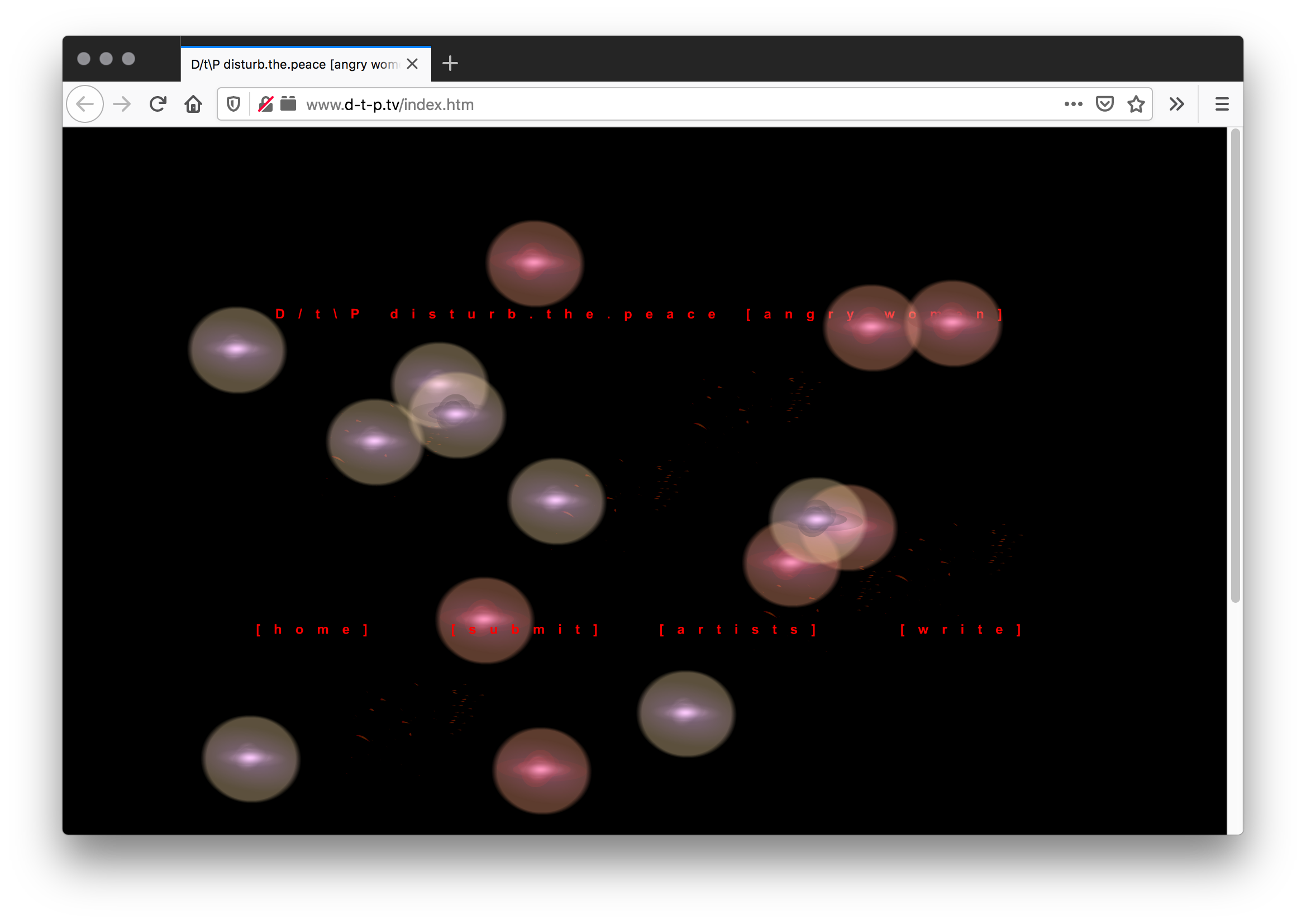
Screenshot, 2020, Firefox v76.0.1 on Mac OS 10.13.3; http://www.d-t-p.tv/index.htm
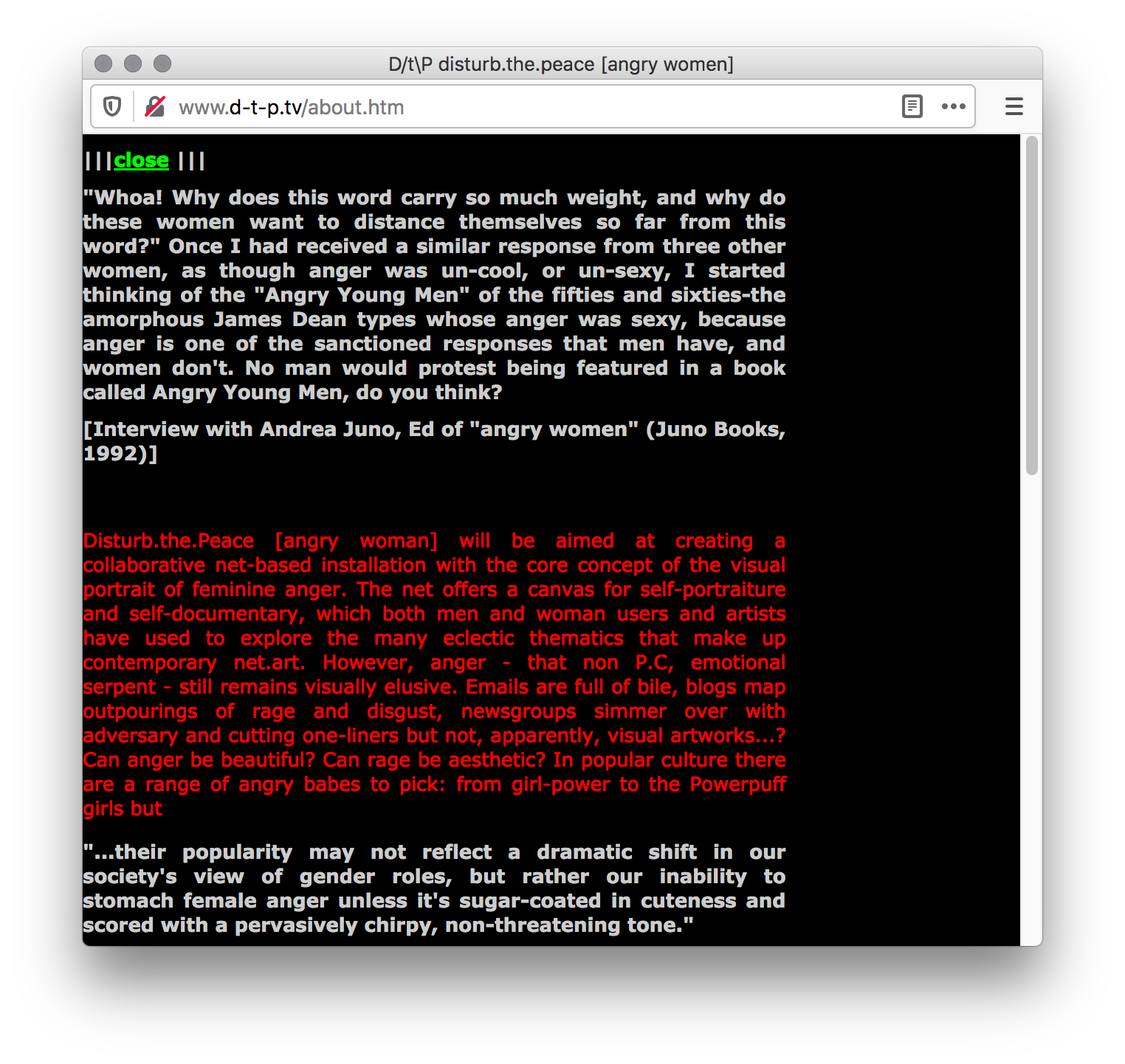
Screenshot, 2020, Firefox v76.0.1 on Mac OS 10.13.3; http://www.d-t-p.tv/about.htm
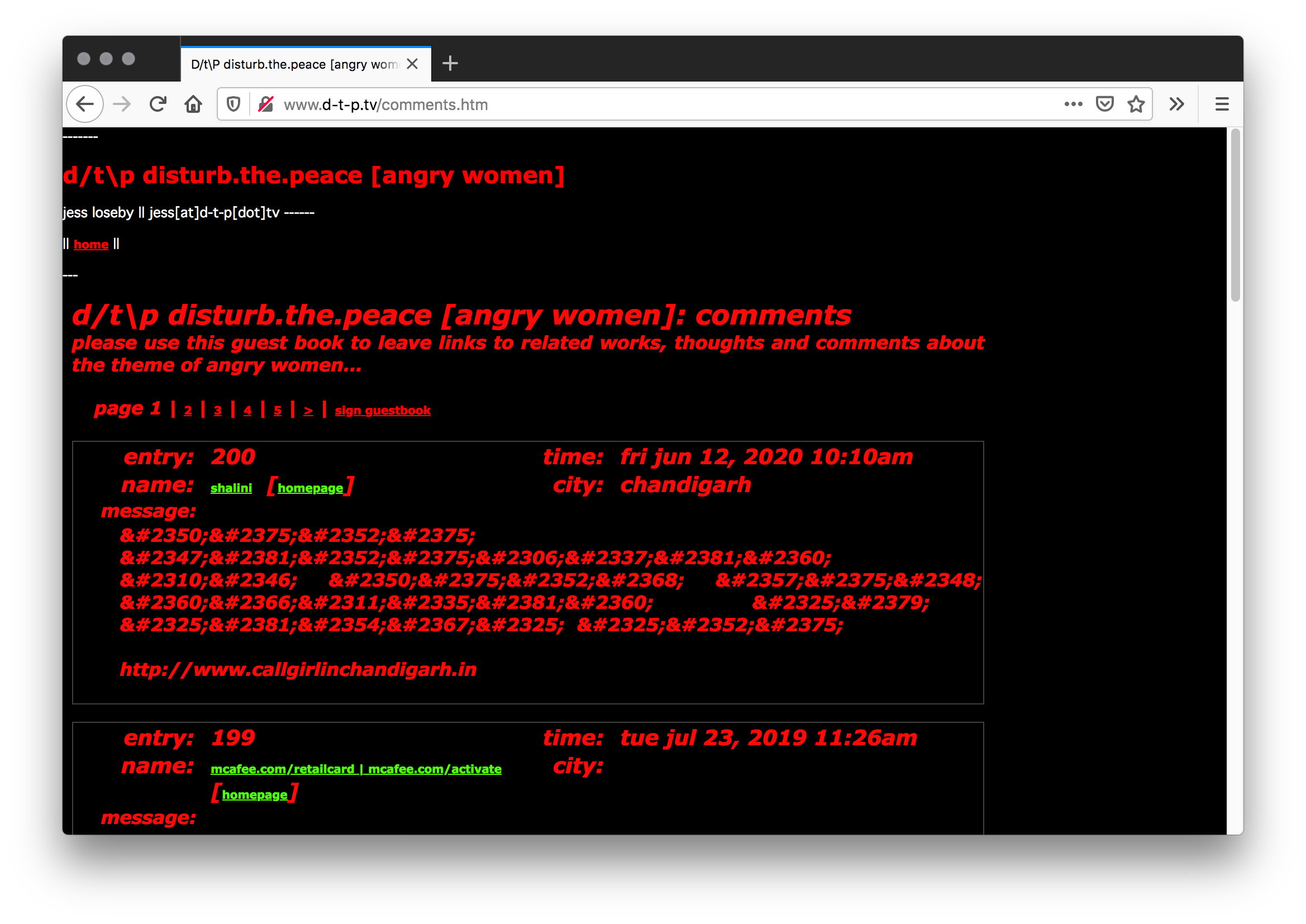
Screenshot, 2020, Firefox v76.0.1 on Mac OS 10.13.3; http://www.d-t-p.tv/comments.htm
Disturb.the.Peace [angry woman] will be aimed at creating a collaborative net-based installation with the core concept of the visual portrait of feminine anger. The net offers a canvas for self-portraiture and self-documentary, which both men and women users and artists have used to explore the many eclectic thematics that make up contemporary net.art. However, anger—that non P.C, emotional serpent—still remains visually elusive. Emails are full of bile, blogs map outpourings of rage and disgust, newsgroups simmer over with adversary and cutting one-liners but not, apparently, visual artworks …? Can anger be beautiful? Can rage be aesthetic?
D/T\P is a collaborative artwork. It is curated by Jess Loseby as lead artist only through organization and realization of the concept in the provision of webspace. Artists are invited to add pages and use the site/space as much or as little as they desire. Work will be open for free submission. There will be almost no curatorial control but preference is to show work that not only visually explores anger but how that anger is amplified and augmented by the Internet and net technology/software; Can anger be interactive? Can anger be translocal? It is hoped that work will go beyond static imagery.
2007, Jess Loseby, http://www.d-t-p.tv/
Contributors include Anne Bray, Annie Abrahams, Barbara Agreste, Deb King, Donna Kuhn, Elisabeth Smolarz, Evelin Stermitz, Girls Who…, Helen Varley Jamieson, Juliet Davis, Lilian Cooper, Maris Bustamante, Maya Kalogera, and Regina Célia Pinto.
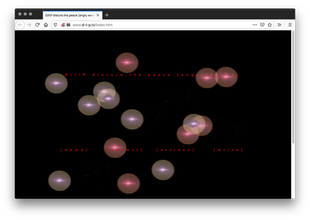
Screenshot, 2020, Firefox v76.0.1 on Mac OS 10.13.3; http://www.d-t-p.tv/index.htm
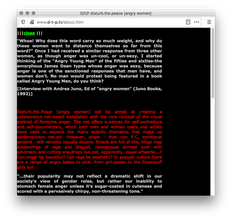
Screenshot, 2020, Firefox v76.0.1 on Mac OS 10.13.3; http://www.d-t-p.tv/about.htm

Screenshot, 2020, Firefox v76.0.1 on Mac OS 10.13.3; http://www.d-t-p.tv/comments.htm
(319)
2007
Arab Women Cyberfeminism
Rita Stephen
Arab women living in the Western Hemisphere have had a long history of struggling to gain status and recognition for their roles and activism within the American feminist movement. In an article geared toward leaders of American feminism, Arab-American feminist Al-Hibri claims: “Some of us were right here, in the forefront of the US women’s movement in the 1960s! Oh yes; you may not have noticed, but many of us are US feminists. We are part of you. We live among you, and we have invisibly struggled by your side for decades.” Yet, American feminists were only interested in addressing “the veil and female genital mutilation as they speak of Arab women’s oppression.” Saliba traces the history of modern Arab-American feminism to 1981 when women of color challenged white feminists at the National Women’s Studies Association (NWSA) conference and emerged in a coalition of “US Third World Feminists.” Their experiences at the NWSA conferences motivated Arab-American women to take a more active role in expressing their voices in local, national, and international politics.
2007, Rita Stephan, in “Arab Diaspora Women,” ed. Eugene Sensenig-Dabbous, special issue, Al-Raida 27, nos. 116–117 (Winter/Spring 2007): pp. 61–64; excerpt p. 61
http://alraidajournal.com/index.php/ALRJ/article/view/211/209 https://www.are.na/block/7977381
Arab women living in the Western Hemisphere have had a long history of struggling to gain status and recognition for their roles and activism within the American feminist movement. In an article geared toward leaders of American feminism, Arab-American feminist Al-Hibri claims: “Some of us were right here, in the forefront of the US women’s movement in the 1960s! Oh yes; you may not have noticed, but many of us are US feminists. We are part of you. We live among you, and we have invisibly struggled by your side for decades.” Yet, American feminists were only interested in addressing “the veil and female genital mutilation as they speak of Arab women’s oppression.” Saliba traces the history of modern Arab-American feminism to 1981 when women of color challenged white feminists at the National Women’s Studies Association (NWSA) conference and emerged in a coalition of “US Third World Feminists.” Their experiences at the NWSA conferences motivated Arab-American women to take a more active role in expressing their voices in local, national, and international politics.
2007, Rita Stephan, in “Arab Diaspora Women,” ed. Eugene Sensenig-Dabbous, special issue, Al-Raida 27, nos. 116–117 (Winter/Spring 2007): pp. 61–64; excerpt p. 61
http://alraidajournal.com/index.php/ALRJ/article/view/211/209 https://www.are.na/block/7977381
(320)
2007–
2010
Generatech
Anarchaserver
GENERATECH es una iniciativa de Investigación-Acción que nace el 2007 con el propósito de promover agenciamientos de género en la tecnocultura audiovisual a través del software libre. Su objetivo desde entonces ha sido crear espacios de coordinación y colaboración entre asociaciones, colectivos y personas para ampliar y defender la libre circulación de conocimientos, experiencias y técnicas en el campo de la reflexión y la acción crítica sobre las relaciones de género actuales. De esta forma, las herramientas audiovisuales operan como un dispositivo tecnopolítico para la reivindicación y defensa de la libertad de contenidos en el marco del capitalismo cognitivo. […] Nuestras herramientas son las tecnologías libres de producción audiovisual, el trabajo colaborativo, la comunicación y la libre difusión de contenidos, acciones y experiencias que tratan de la relación entre género y tecnología.
Generatech is an Action-Research initiative that was born in 2007 with the purpose of promoting gender assemblages in audiovisual technoculture through free software. Its objective since then has been to create spaces for coordination and collaboration between associations, groups and individuals to expand and defend the free circulation of knowledge, experiences and techniques in the field of reflection and critical action on current gender relations. In this way, audiovisual tools operate as a techno-political device for the vindication and defense of content freedom within the framework of cognitive capitalism. This freedom is the basis for actively fighting and criticizing gender normative systems. […] Our tools are the free technologies of audiovisual production, collaborative work, communication and the free dissemination of content, actions and experiences that deal with the relationship between gender and technology.
2007, Anarchaserver; excerpt from “Generatech,” archivo-t.net, http://archivo-t.net/generatech/; referred by Klau Chinche (Klau Kinky)
https://repository.anarchaserver.org/index.php?/category/10
Spain
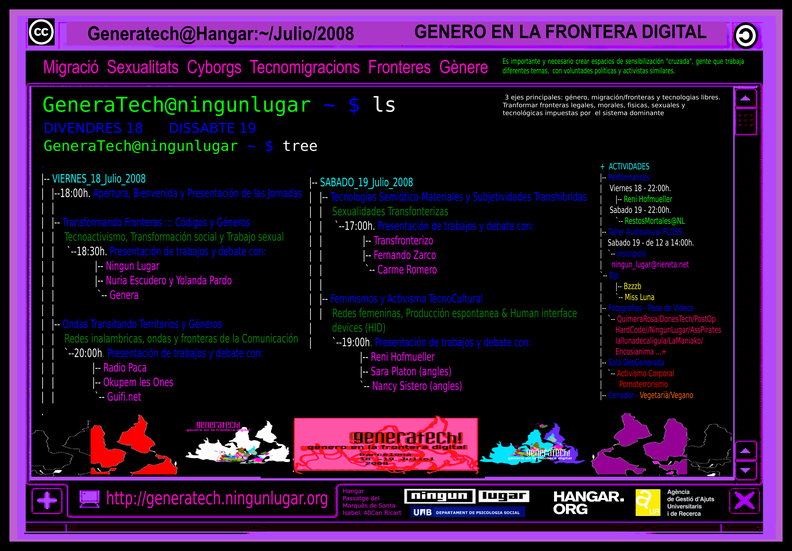
“Generatech@Hangar 2008”, image from https://repository.anarchaserver.org/picture.php?/617/category/10
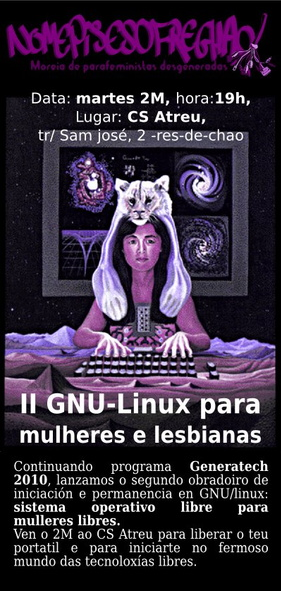
“GNU-Linux para mulheres e lesbianas”, image from https://repository.anarchaserver.org/picture.php?/615/category/10
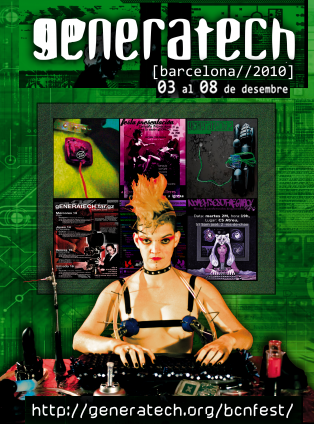
“generatech barcelona 2010”, image from https://repository.anarchaserver.org/picture.php?/614/category/10

“generatech ningun lugar”, image from https://repository.anarchaserver.org/picture.php?/600/category/10
GENERATECH es una iniciativa de Investigación-Acción que nace el 2007 con el propósito de promover agenciamientos de género en la tecnocultura audiovisual a través del software libre. Su objetivo desde entonces ha sido crear espacios de coordinación y colaboración entre asociaciones, colectivos y personas para ampliar y defender la libre circulación de conocimientos, experiencias y técnicas en el campo de la reflexión y la acción crítica sobre las relaciones de género actuales. De esta forma, las herramientas audiovisuales operan como un dispositivo tecnopolítico para la reivindicación y defensa de la libertad de contenidos en el marco del capitalismo cognitivo. […] Nuestras herramientas son las tecnologías libres de producción audiovisual, el trabajo colaborativo, la comunicación y la libre difusión de contenidos, acciones y experiencias que tratan de la relación entre género y tecnología.
Generatech is an Action-Research initiative that was born in 2007 with the purpose of promoting gender assemblages in audiovisual technoculture through free software. Its objective since then has been to create spaces for coordination and collaboration between associations, groups and individuals to expand and defend the free circulation of knowledge, experiences and techniques in the field of reflection and critical action on current gender relations. In this way, audiovisual tools operate as a techno-political device for the vindication and defense of content freedom within the framework of cognitive capitalism. This freedom is the basis for actively fighting and criticizing gender normative systems. […] Our tools are the free technologies of audiovisual production, collaborative work, communication and the free dissemination of content, actions and experiences that deal with the relationship between gender and technology.
2007, Anarchaserver; excerpt from “Generatech,” archivo-t.net, http://archivo-t.net/generatech/; referred by Klau Chinche (Klau Kinky)
https://repository.anarchaserver.org/index.php?/category/10
Spain
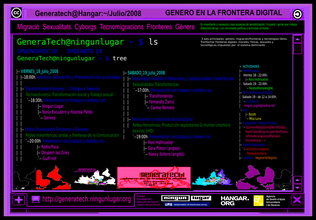
“Generatech@Hangar 2008”, image from https://repository.anarchaserver.org/picture.php?/617/category/10
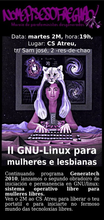
“GNU-Linux para mulheres e lesbianas”, image from https://repository.anarchaserver.org/picture.php?/615/category/10
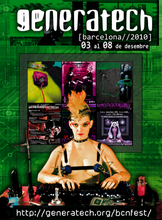
“generatech barcelona 2010”, image from https://repository.anarchaserver.org/picture.php?/614/category/10

“generatech ningun lugar”, image from https://repository.anarchaserver.org/picture.php?/600/category/10
(321)
2007
Akelarre Cyborg
Quimera Rosa
Los akelarres eran encuentros de brujas. Si nos alejamos de las definiciones religiosas de la brujería, como de las lecturas socio-históricas, nos encontramos con un conjunto de prácticas que, a través de la manipulación de símbolos, cuerpos, objetos, signos y entornos, tiene como finalidad la creación/modificación del mundo, lo cual nos acerca a la definición del cyborg dada por Donna Haraway.
Si consideramos, desde una perspectiva queer/transfeminista, las pretensiones de las últimas vanguardias artísticas de suprimir la frontera entre arte y vida, podemos considerar los akelarres como performances colectivas de arte total. El conjunto de las prácticas de las brujas, que ellas llamaban ‘las artes’ o ‘el arte’, necesita hoy de un sinfín de categorías como arte, política, filosofía, técnica, ciencia, sexualidad, para poder estar abarcado.
The coven were witches’ encounters. If we move away from the religious definitions of witchcraft, as well as from the socio-historical readings, we find a set of practices that, through the manipulation of symbols, bodies, objects, signs and environments, has the purpose of creating / modification of the world, which brings us closer to the definition of the cyborg given by Donna Haraway.
If we consider, from a queer / transfeminist perspective, the claims of the latest artistic avant-gardes to suppress the boundary between art and life, we can consider coven as collective performances of total art. The set of the witches’ practices, which they called “the arts” or “art,” today needs endless categories such as art, politics, philosophy, technique, science, sexuality, in order to be covered.
2007, Quimera Rosa, https://quimerarosa.net/akelarre-cyborg-2/; referred by Klau Chinche (Klau Kinky)
Los akelarres eran encuentros de brujas. Si nos alejamos de las definiciones religiosas de la brujería, como de las lecturas socio-históricas, nos encontramos con un conjunto de prácticas que, a través de la manipulación de símbolos, cuerpos, objetos, signos y entornos, tiene como finalidad la creación/modificación del mundo, lo cual nos acerca a la definición del cyborg dada por Donna Haraway.
Si consideramos, desde una perspectiva queer/transfeminista, las pretensiones de las últimas vanguardias artísticas de suprimir la frontera entre arte y vida, podemos considerar los akelarres como performances colectivas de arte total. El conjunto de las prácticas de las brujas, que ellas llamaban ‘las artes’ o ‘el arte’, necesita hoy de un sinfín de categorías como arte, política, filosofía, técnica, ciencia, sexualidad, para poder estar abarcado.
The coven were witches’ encounters. If we move away from the religious definitions of witchcraft, as well as from the socio-historical readings, we find a set of practices that, through the manipulation of symbols, bodies, objects, signs and environments, has the purpose of creating / modification of the world, which brings us closer to the definition of the cyborg given by Donna Haraway.
If we consider, from a queer / transfeminist perspective, the claims of the latest artistic avant-gardes to suppress the boundary between art and life, we can consider coven as collective performances of total art. The set of the witches’ practices, which they called “the arts” or “art,” today needs endless categories such as art, politics, philosophy, technique, science, sexuality, in order to be covered.
2007, Quimera Rosa, https://quimerarosa.net/akelarre-cyborg-2/; referred by Klau Chinche (Klau Kinky)
(322)
2007
Genderchangers Academy March
Genderchangers Academy
On Thursday 8 March 2007, International Women’s Day, twelve female geeks, feminist techies marched across the virtual streets of the internet. The plan was for all of us to join an IRC channel simultaneously, to wish everyone a “Happy Women’s Day,” sprinkle a few slogans, round off with a list of women we appreciate, and sign off! […]
In preparation of the “march” each of us had chosen a well-known woman for our nick (nickname), set our quit message to something in the spirit of this day, and had a text file with chants and slogans at hand so as to be able to cut and post them in a flash. Just before parting from the channel we pasted an URL of the website explaining our march.
Naturally we were deftly kicked and banned from most servers as a result of our actions. One set of tech operators apologized and lifted the ban when they realized we weren’t bots: they found us so co-ordinated they couldn't believe it to be otherwise. We were however logging in, out and back to our base-camp channel with so much excitement that I think there is room for improvement next year :).
2007, Genderchangers Academy, https://genderchangers.org/march.html; submitted by Christina Dunbar-Hester
https://genderchangers.org/images/irc_march.pdf
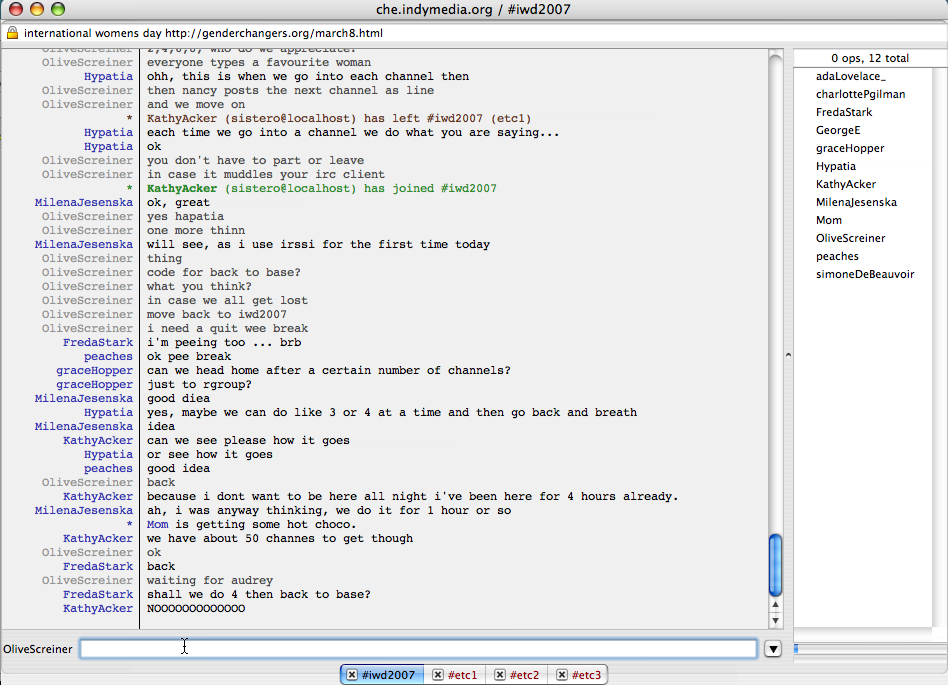
“screen shot of part of our irc action chat session!”
On Thursday 8 March 2007, International Women’s Day, twelve female geeks, feminist techies marched across the virtual streets of the internet. The plan was for all of us to join an IRC channel simultaneously, to wish everyone a “Happy Women’s Day,” sprinkle a few slogans, round off with a list of women we appreciate, and sign off! […]
In preparation of the “march” each of us had chosen a well-known woman for our nick (nickname), set our quit message to something in the spirit of this day, and had a text file with chants and slogans at hand so as to be able to cut and post them in a flash. Just before parting from the channel we pasted an URL of the website explaining our march.
Naturally we were deftly kicked and banned from most servers as a result of our actions. One set of tech operators apologized and lifted the ban when they realized we weren’t bots: they found us so co-ordinated they couldn't believe it to be otherwise. We were however logging in, out and back to our base-camp channel with so much excitement that I think there is room for improvement next year :).
2007, Genderchangers Academy, https://genderchangers.org/march.html; submitted by Christina Dunbar-Hester
https://genderchangers.org/images/irc_march.pdf
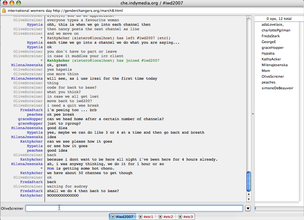
“screen shot of part of our irc action chat session!”
(323)
2008
Why are Women Like Chickens? Or Cows? Cyberfeminism Interrogates Biotechnology
subRosa
Today, completely new biological bodies are being created through molecular genetic engineering, cloning, stem cell cultivation, and transgenics. Laboratory constructed human embryos, animals, plants and trans-species are proliferating in our environment. These are fleshed beings beyond any previously known category, transgressing boundaries in ways previously only imagined in myth and science fiction. An era of interspecies technologies introduces irrevocable changes in reproductive and generative processes, the raw materials of which are often (female) human and animal body parts. Many knowledge/power systems intersect and collide on this biotech frontier: from computing technologies, medicine, and genetics to religion, philosophy, and feminist theory. And yet there is very little public debate or critical analysis engaging the philosophical, ethical, and political issues of difference raised by the new bio sciences. This artist lecture takes a critical look at cultural meanings and representations of reproductive and recombinant biotechnologies, in which human and animal bodies are becoming distributed, patented bodies, part of a global exchange of property and value.
2008, subRosa (lecture, Škuc Gallery, Ljubljana, Slovenia, October 13, 2008); excerpt from “Why are Women Like Chickens? Or Cows? Cyberfeminism Interrogates Biotechnology,” City of Women, http://www.cityofwomen.org/en/content/2008/project/why-are-women-chickens-or-cows-cyberfeminism-interrogates-biotechnology
Today, completely new biological bodies are being created through molecular genetic engineering, cloning, stem cell cultivation, and transgenics. Laboratory constructed human embryos, animals, plants and trans-species are proliferating in our environment. These are fleshed beings beyond any previously known category, transgressing boundaries in ways previously only imagined in myth and science fiction. An era of interspecies technologies introduces irrevocable changes in reproductive and generative processes, the raw materials of which are often (female) human and animal body parts. Many knowledge/power systems intersect and collide on this biotech frontier: from computing technologies, medicine, and genetics to religion, philosophy, and feminist theory. And yet there is very little public debate or critical analysis engaging the philosophical, ethical, and political issues of difference raised by the new bio sciences. This artist lecture takes a critical look at cultural meanings and representations of reproductive and recombinant biotechnologies, in which human and animal bodies are becoming distributed, patented bodies, part of a global exchange of property and value.
2008, subRosa (lecture, Škuc Gallery, Ljubljana, Slovenia, October 13, 2008); excerpt from “Why are Women Like Chickens? Or Cows? Cyberfeminism Interrogates Biotechnology,” City of Women, http://www.cityofwomen.org/en/content/2008/project/why-are-women-chickens-or-cows-cyberfeminism-interrogates-biotechnology
(324)
2008
Webbing Cyberfeminist Practice: Communities, Pedagogies, and Social Action
Radhika Gajjala, Kristine L. Blair, Christine Tulley
The information highway, situated as it is within hierarchies that privilege certain ways of being, cannot be of any use in providing information and empowering such groups of people unless those of us who claim to be invested in building diverse webs actually take the trouble to understand these offline realities and help provide options for these “Others” to not only gain access but also subvert and transform the gendered hierarchies that continue to govern digital spaces. Such background is necessary for those of us who claim to be “cyberfeminist” (whatever the level of comfort or discomfort with which we assume such a label) as we examine how “resistance” and “transformation” in online spaces is manifested and sometimes even (re)appropriated. […] The basis for any type of change is formed, we would argue, through location and positioning in relation to shifting centers and margins. One might then ask—what sorts of resistance and transformation emerges offline through the situated/located practices and negotiations of offline communities?
2008, Kristine Blair, Radhika Gajjala, and Christine Tulley, eds. (New York: Hampton Press, 2008); excerpt from Kristine Blair, Radhika Gajjala, and Christine Tulley, “Introduction: The Webs We Weave: Locating the Feminism in Cyberfeminism,” in Blair et al., Webbing Cyberfeminist Practice, p. 17
Contributors include Susanna Paasonen, Kris Nesbitt, Angela Haas, Christina Downer, Morgan Gresham, Roxanne Kirkwood, Sandi Reynolds, Christine Tulley, Nancy Baym, Claudia Herbst, Susan Kirtley, Melissa Fore, Kara Moloney, Margaret Strain, Kathleen Torrens, Jeannette Riley, Mary Hocks, Cynthia Selfe, Mary Queen, Naida Zukic, Deborah Silverman Bowen, Jordynn Jack, Danielle Nicole DeVoss, Tara McPherson, and Cheris Kramarae.
The information highway, situated as it is within hierarchies that privilege certain ways of being, cannot be of any use in providing information and empowering such groups of people unless those of us who claim to be invested in building diverse webs actually take the trouble to understand these offline realities and help provide options for these “Others” to not only gain access but also subvert and transform the gendered hierarchies that continue to govern digital spaces. Such background is necessary for those of us who claim to be “cyberfeminist” (whatever the level of comfort or discomfort with which we assume such a label) as we examine how “resistance” and “transformation” in online spaces is manifested and sometimes even (re)appropriated. […] The basis for any type of change is formed, we would argue, through location and positioning in relation to shifting centers and margins. One might then ask—what sorts of resistance and transformation emerges offline through the situated/located practices and negotiations of offline communities?
2008, Kristine Blair, Radhika Gajjala, and Christine Tulley, eds. (New York: Hampton Press, 2008); excerpt from Kristine Blair, Radhika Gajjala, and Christine Tulley, “Introduction: The Webs We Weave: Locating the Feminism in Cyberfeminism,” in Blair et al., Webbing Cyberfeminist Practice, p. 17
Contributors include Susanna Paasonen, Kris Nesbitt, Angela Haas, Christina Downer, Morgan Gresham, Roxanne Kirkwood, Sandi Reynolds, Christine Tulley, Nancy Baym, Claudia Herbst, Susan Kirtley, Melissa Fore, Kara Moloney, Margaret Strain, Kathleen Torrens, Jeannette Riley, Mary Hocks, Cynthia Selfe, Mary Queen, Naida Zukic, Deborah Silverman Bowen, Jordynn Jack, Danielle Nicole DeVoss, Tara McPherson, and Cheris Kramarae.
(325)
2008
South Asian Technospaces
Radhika Gajjala, Venkataramana Gajjala (ed)
Most economic and social activity in our daily lives somehow leads us back to the Internet: clicking on links “going” to Web sites, “meeting” friends online, “chatting” with a sister or brother, shopping, sending greetings for Christmas, Diwali, or Id […] Metaphors of space and movement in relation to networked technologies have become commonplace as we have come to take our digitally mediated techno-habitus for granted. This edited collection on South Asian technospaces provides perspectives on how South Asian (and often more specifically Indian) diasporas inhabit technomediated environments through their economic and sociocultural activities. The themes examined include religious, caste, language, and gender in online communities; call centers and their role in the global economy; Bollywood online and offline; digital music; and Web sites to help arrange marriages.
2008, Radhika Gajjala and Venkataramana Gajjala, eds. (New York: Peter Lang, 2008); excerpt from Radhika Gajjala and Venkataramana Gajjala, “Introduction: South Asian Digital Networks and Global Techno-Spaces,” in Gajjala and Gajjala, South Asian Technospaces, p. 1
Contributors include Radhika Gajjala, Venkataramana Gajjala, Linda Leung, Nabeel Zuberi, Amit S. Rai, P. Thirumal, Vinita Agarwal, Patrice M. Buzzanell, Archana Sharma, Rohit Chopra, Anustup Nayak, Natalia Rybas, Ananda Mitra, Kiran Mirchandani, and Divya C. McMillin.
https://www.peterlang.com/view/title/58592 https://www.are.na/block/7894439
India
Most economic and social activity in our daily lives somehow leads us back to the Internet: clicking on links “going” to Web sites, “meeting” friends online, “chatting” with a sister or brother, shopping, sending greetings for Christmas, Diwali, or Id […] Metaphors of space and movement in relation to networked technologies have become commonplace as we have come to take our digitally mediated techno-habitus for granted. This edited collection on South Asian technospaces provides perspectives on how South Asian (and often more specifically Indian) diasporas inhabit technomediated environments through their economic and sociocultural activities. The themes examined include religious, caste, language, and gender in online communities; call centers and their role in the global economy; Bollywood online and offline; digital music; and Web sites to help arrange marriages.
2008, Radhika Gajjala and Venkataramana Gajjala, eds. (New York: Peter Lang, 2008); excerpt from Radhika Gajjala and Venkataramana Gajjala, “Introduction: South Asian Digital Networks and Global Techno-Spaces,” in Gajjala and Gajjala, South Asian Technospaces, p. 1
Contributors include Radhika Gajjala, Venkataramana Gajjala, Linda Leung, Nabeel Zuberi, Amit S. Rai, P. Thirumal, Vinita Agarwal, Patrice M. Buzzanell, Archana Sharma, Rohit Chopra, Anustup Nayak, Natalia Rybas, Ananda Mitra, Kiran Mirchandani, and Divya C. McMillin.
https://www.peterlang.com/view/title/58592 https://www.are.na/block/7894439
India
(326)
2008
The Hybrid Cultures of Cyborg Diasporas: Making Sense of the Expatriate Odias' Conversations
Anustup Nayak, Natalia Rybas
The emergence of Internet networks of immigrants provides a complex counterpoint to such divergent understandings of technol-ogy-mediated communities. “Cyborg diaspora” as a term was originally conceived by [Indira] Karamcheti (1992), much before the proliferation of the Internet, to talk of a possible technology-enabled community that would help disrupt the fossilized notion of “Indianness” within Indian immigrant communities. This conception has been actualized in many online communities created on the Internet by immigrants. [Radhika] Gajjala, another Indian scholar, rejuvenates Karamcheti’s cyborg diasporas to “refer to the formation of virtual imagined communities of diasporic post-colonials online.” The expressions of immigrants have been characterized by the conception of an “imagined community,” an extension of the boundaries of the nation-state and geocentric ethnicity created by the imagination of people separated by distance yet united by the twin forces of print media and capitalism.
2008, Anustup Nayak and Natalia Rybas, in South Asian Technospaces, eds. Radhika Gajjala and Venkataramana Gajjala (New York: Peter Lang, 2008), pp. 179–204; excerpt p. 185
https://www.are.na/block/7894486
The emergence of Internet networks of immigrants provides a complex counterpoint to such divergent understandings of technol-ogy-mediated communities. “Cyborg diaspora” as a term was originally conceived by [Indira] Karamcheti (1992), much before the proliferation of the Internet, to talk of a possible technology-enabled community that would help disrupt the fossilized notion of “Indianness” within Indian immigrant communities. This conception has been actualized in many online communities created on the Internet by immigrants. [Radhika] Gajjala, another Indian scholar, rejuvenates Karamcheti’s cyborg diasporas to “refer to the formation of virtual imagined communities of diasporic post-colonials online.” The expressions of immigrants have been characterized by the conception of an “imagined community,” an extension of the boundaries of the nation-state and geocentric ethnicity created by the imagination of people separated by distance yet united by the twin forces of print media and capitalism.
2008, Anustup Nayak and Natalia Rybas, in South Asian Technospaces, eds. Radhika Gajjala and Venkataramana Gajjala (New York: Peter Lang, 2008), pp. 179–204; excerpt p. 185
https://www.are.na/block/7894486
(327)
2008
From Cyberfeminism to Technofeminism: From an Essentialist Perspective to Social Cyberfeminism in Certain Feminist Practices in Spain
Sonia Núñez Puente
I will attempt to analyze […] two prominent feminist web portals launched in Spain in the 1990s. I am referring to E-leusis, founded by María Angustias Bertomeu, and Mujeres en Red (Women Online), founded by Montserrat Boix. […] Complementing E-leusis’s and Mujeres en Red’s orientation toward cyberfeminist praxis, other important portals such as Remedios Zafra's Habitar en punto(net) (2008) or Estudios online, created by Ana Martínez-Collado (2008), are dedicated to the phenomenon of cyberfeminism, particularly the version relating to art and technology. Cyberfeminist blogs bear mentioning, as well; in some cases, the creators of the Web portals maintain blogs, such as Montserrat Boix’s own, which she defines as a blog about feminisms, free knowledge, ethical technology and networks (Nireblog). Many other blogs on cyberfeminism are on the web pages of major cyberfeminist activists, as in those housed on Mujeres en Red. […] This “social cyberfeminism” would concern itself with debates about, and consequences of, constructing new identity online; further, it would explore approaches to feminist praxis departing from the inclusion of women in the (traditionally masculine) fields of programming, creation of networks, and even hacking.
2008, Sonia Núñez Puente, Women's Studies International Forum 31, no. 6 (2008): pp. 434–440; excerpt p. 435
Spain
I will attempt to analyze […] two prominent feminist web portals launched in Spain in the 1990s. I am referring to E-leusis, founded by María Angustias Bertomeu, and Mujeres en Red (Women Online), founded by Montserrat Boix. […] Complementing E-leusis’s and Mujeres en Red’s orientation toward cyberfeminist praxis, other important portals such as Remedios Zafra's Habitar en punto(net) (2008) or Estudios online, created by Ana Martínez-Collado (2008), are dedicated to the phenomenon of cyberfeminism, particularly the version relating to art and technology. Cyberfeminist blogs bear mentioning, as well; in some cases, the creators of the Web portals maintain blogs, such as Montserrat Boix’s own, which she defines as a blog about feminisms, free knowledge, ethical technology and networks (Nireblog). Many other blogs on cyberfeminism are on the web pages of major cyberfeminist activists, as in those housed on Mujeres en Red. […] This “social cyberfeminism” would concern itself with debates about, and consequences of, constructing new identity online; further, it would explore approaches to feminist praxis departing from the inclusion of women in the (traditionally masculine) fields of programming, creation of networks, and even hacking.
2008, Sonia Núñez Puente, Women's Studies International Forum 31, no. 6 (2008): pp. 434–440; excerpt p. 435
Spain
(328)
2008–
2013
ArtFem.TV
Evelin Stermitz
ArtFem.TV is an online television programming presenting Art and Feminism. The aim of ArtFem.TV is to foster Women in the Arts, their art works and projects, to create an international online television screen for the creativity, images and voices of Women. ArtFem.TV is a non-profit artist run ITV and media art portal about Art and Feminism and has been founded in the year 2008. […] ArtFem.TV Code and Design by Torbjoern Karlevid and Vincent Van Uffelen, NOVA novainteractive.at. ArtFem.TV is powered by mur.at. […] This web site was compiled with utmost care.
2008, Evelin Stermitz, http://artfem.tv/
ArtFem.TV is an online television programming presenting Art and Feminism. The aim of ArtFem.TV is to foster Women in the Arts, their art works and projects, to create an international online television screen for the creativity, images and voices of Women. ArtFem.TV is a non-profit artist run ITV and media art portal about Art and Feminism and has been founded in the year 2008. […] ArtFem.TV Code and Design by Torbjoern Karlevid and Vincent Van Uffelen, NOVA novainteractive.at. ArtFem.TV is powered by mur.at. […] This web site was compiled with utmost care.
2008, Evelin Stermitz, http://artfem.tv/
(329)
2008
Miss Despoinas
Nancy Mauro-Flude
Despoinas Media Coven (homebrewed since 2008), began as a garage hackspace to remove the strict barriers between software users and developers to enable the “uninitiated” into using free software. […] An autonomous feminist web server to host creative arts projects, based in Hobart, the collective is often joined by satellite agents: artists, programmers, critical engineers, writers, designers, dancers, comrades, curators and thinkers from around the planetary archipelago for to make, to exchange, diversify narratives, strategise and constructively critique—to keep moving with the manifold of time. Despoinas Media Coven was described as a “technological coven disguised as an art project” (WARP Magazine 2013) and continues to host digital literacy sewing circles, stretching networks through museums, galleries, stages, through radiowaves and under waterfalls. Projects events and discussions range from the political implications of critical making to feminist reflections on the place of technology in culture and society. Despoinas taps into the principle of “knowledge sharing” passionately emphasized by the Free Software Foundation.
2008, Nancy Mauro-Flude, http://miss-hack.org/
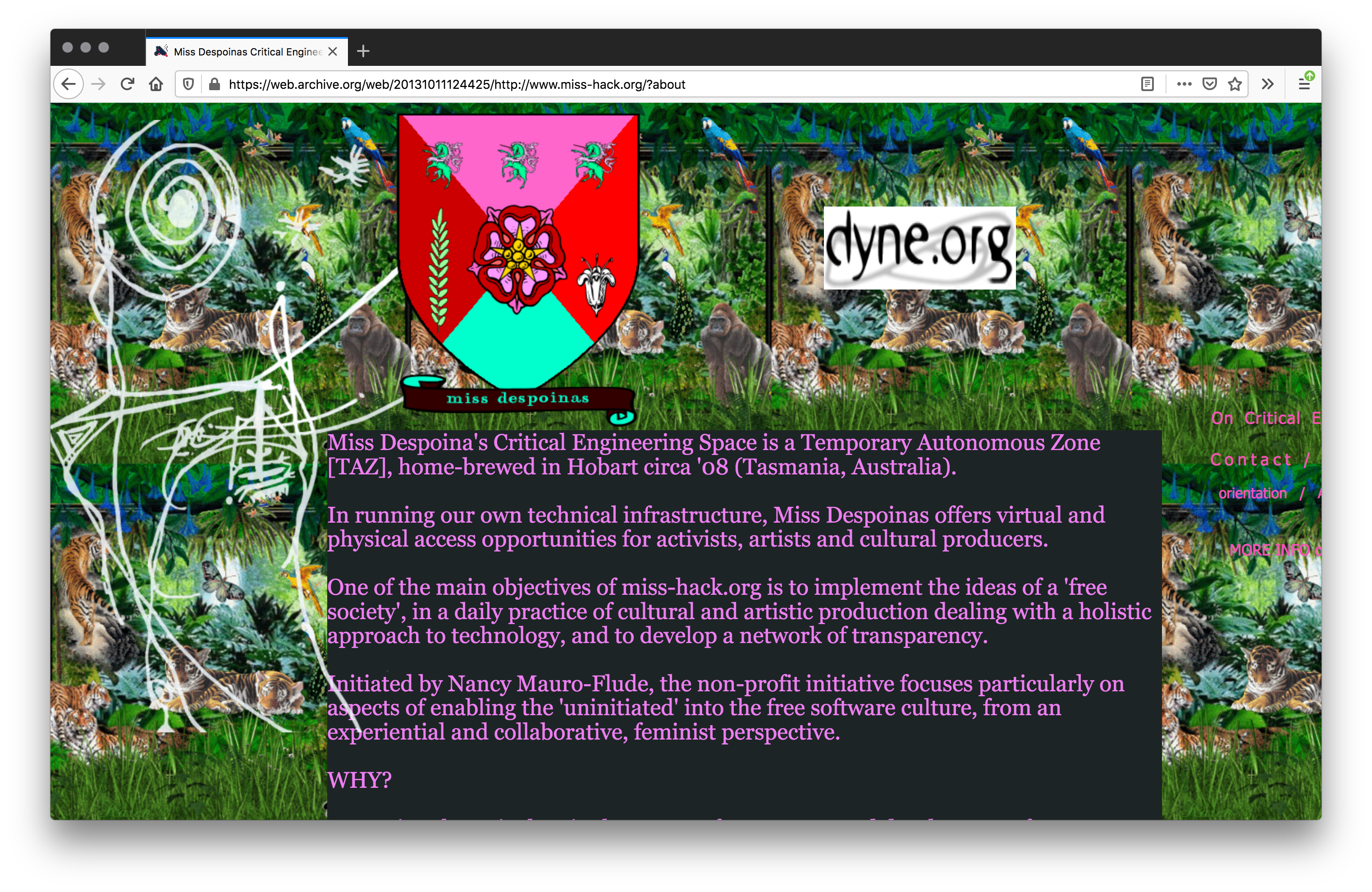
Screenshot, 2020, Firefox v76.0.1 on Mac OS 10.13.3; https://web.archive.org/web/20131011124425/http://www.miss-hack.org/?about
Despoinas Media Coven (homebrewed since 2008), began as a garage hackspace to remove the strict barriers between software users and developers to enable the “uninitiated” into using free software. […] An autonomous feminist web server to host creative arts projects, based in Hobart, the collective is often joined by satellite agents: artists, programmers, critical engineers, writers, designers, dancers, comrades, curators and thinkers from around the planetary archipelago for to make, to exchange, diversify narratives, strategise and constructively critique—to keep moving with the manifold of time. Despoinas Media Coven was described as a “technological coven disguised as an art project” (WARP Magazine 2013) and continues to host digital literacy sewing circles, stretching networks through museums, galleries, stages, through radiowaves and under waterfalls. Projects events and discussions range from the political implications of critical making to feminist reflections on the place of technology in culture and society. Despoinas taps into the principle of “knowledge sharing” passionately emphasized by the Free Software Foundation.
2008, Nancy Mauro-Flude, http://miss-hack.org/
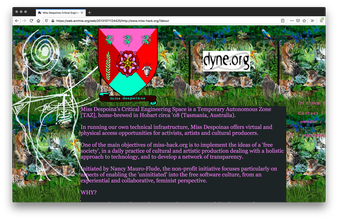
Screenshot, 2020, Firefox v76.0.1 on Mac OS 10.13.3; https://web.archive.org/web/20131011124425/http://www.miss-hack.org/?about
(330)
2008
Feminist Tech eXchange (FTX)
Erika Smith, hvale vale, Jennifer Radloff
Feminist Tech eXchange (FTX) brings the APC Women’s Rights Programme’s (WRP’s) unique methodology and approach to capacity building. FTX creates safe, creative and feminist spaces of exchange and experience where the politics and practice of technology are informed by local and contextual realities of women, and build collective knowledge and ownership.
FTX was developed in response to the expressed needs of feminist and women’s rights movements for greater understanding of emerging internet and technology-related issues, trends, governance and application in feminist activism. FTX facilitates inter-movement building between women’s rights activists, LGBTQI movements, internet and technology rights organizations, and human rights advocates.
2008, Erika Smith, hvale vale, and Jennifer Radloff, https://www.apc.org/en/project/feminist-tech-exchange
Brazil, Kenya, Mexico
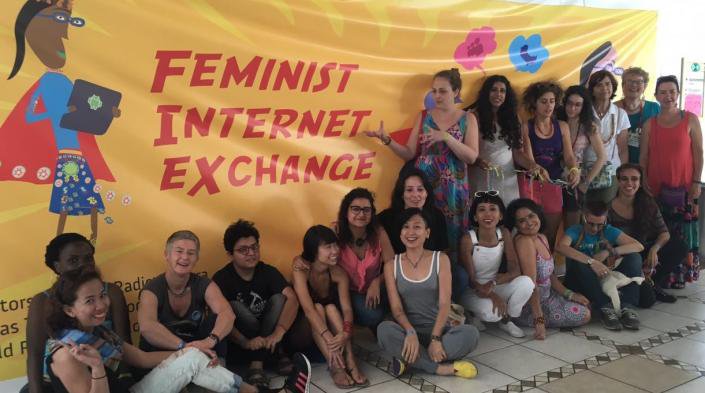
Feminist Internet Exchange group portrait
Feminist Tech eXchange (FTX) brings the APC Women’s Rights Programme’s (WRP’s) unique methodology and approach to capacity building. FTX creates safe, creative and feminist spaces of exchange and experience where the politics and practice of technology are informed by local and contextual realities of women, and build collective knowledge and ownership.
FTX was developed in response to the expressed needs of feminist and women’s rights movements for greater understanding of emerging internet and technology-related issues, trends, governance and application in feminist activism. FTX facilitates inter-movement building between women’s rights activists, LGBTQI movements, internet and technology rights organizations, and human rights advocates.
2008, Erika Smith, hvale vale, and Jennifer Radloff, https://www.apc.org/en/project/feminist-tech-exchange
Brazil, Kenya, Mexico
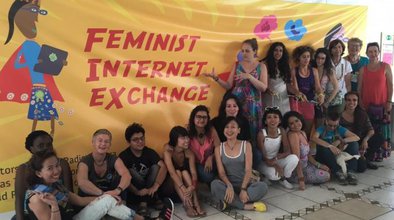
Feminist Internet Exchange group portrait
(331)
2008–
2017
EROTICS: An Exploratory Research Project into Sexuality and the Internet
What is “harmful content” on the internet? The definition is contestable, subjective and open to a range of interpretations, and the majority of interventions to combat it are mostly concerned with obscenity and child pornography. Sexual rights workers are troubled by the growing role of conservative forces—supported by religious extremists—and their attempts to encourage new legislation that would treat all online sexual exchanges as sexual predation and all adult content on the internet as pornography. This protectionist approach overshadows other important aspects of the internet that directly impact on internet users’ lives and their ability to access vital information on sexuality, sexual health and sexual rights. EROTICS is a two phase, exploratory research project carried out by APC, which aims to narrow the gap between political assumptions and a better understanding of content and “harm” based on women’s real experience of sexuality online.
2008, Association for Progressive Communications (APC), https://www.apc.org/en/project/erotics-exploratory-research-project-sexuality-and-internet
https://www.apc.org/sites/default/files/Erotics_1_FIND.pdf
Brazil, Lebanon, India, South Africa

EROTICS logo
What is “harmful content” on the internet? The definition is contestable, subjective and open to a range of interpretations, and the majority of interventions to combat it are mostly concerned with obscenity and child pornography. Sexual rights workers are troubled by the growing role of conservative forces—supported by religious extremists—and their attempts to encourage new legislation that would treat all online sexual exchanges as sexual predation and all adult content on the internet as pornography. This protectionist approach overshadows other important aspects of the internet that directly impact on internet users’ lives and their ability to access vital information on sexuality, sexual health and sexual rights. EROTICS is a two phase, exploratory research project carried out by APC, which aims to narrow the gap between political assumptions and a better understanding of content and “harm” based on women’s real experience of sexuality online.
2008, Association for Progressive Communications (APC), https://www.apc.org/en/project/erotics-exploratory-research-project-sexuality-and-internet
https://www.apc.org/sites/default/files/Erotics_1_FIND.pdf
Brazil, Lebanon, India, South Africa

EROTICS logo
(332)
2008
ENgenderingGenderChangers
Zach Blas
ENgenderingGenderChangers are designed to humorously question the conflation of gender with hardware connectivity in the larger sphere of IT culture. Offering a wider range of ‘solutions’ to the male / female plug binary does not necessarily solve or better this conflation. Rather, it grossly exaggerates the problem in order to gain attention from the public. ENgenderingGenderChangers are mass produced and covertly distributed in Radioshacks, Best Buys, Circuit Cities, and other consumer electronics stores across the nation and Europe …
ENgenderingGenderChangers desire to encounter the public as a product and not as an art object, for a product demands other questions to be answered for the purchaser, regarding functionality, compatibility, and affordability. As a potential product for purchase, ENgenderingGenderChangers offer a critique of gender subordination in technological flows of viral capitalism.
2008, Zach Blas; excerpt from “Queer Technologies/ENgenderingGenderChangers,” http://users.design.ucla.edu/~zblas/thesis_website/gender_changers/engendering_gender_changers.html
https://zachblas.info/works/queer-technologies/
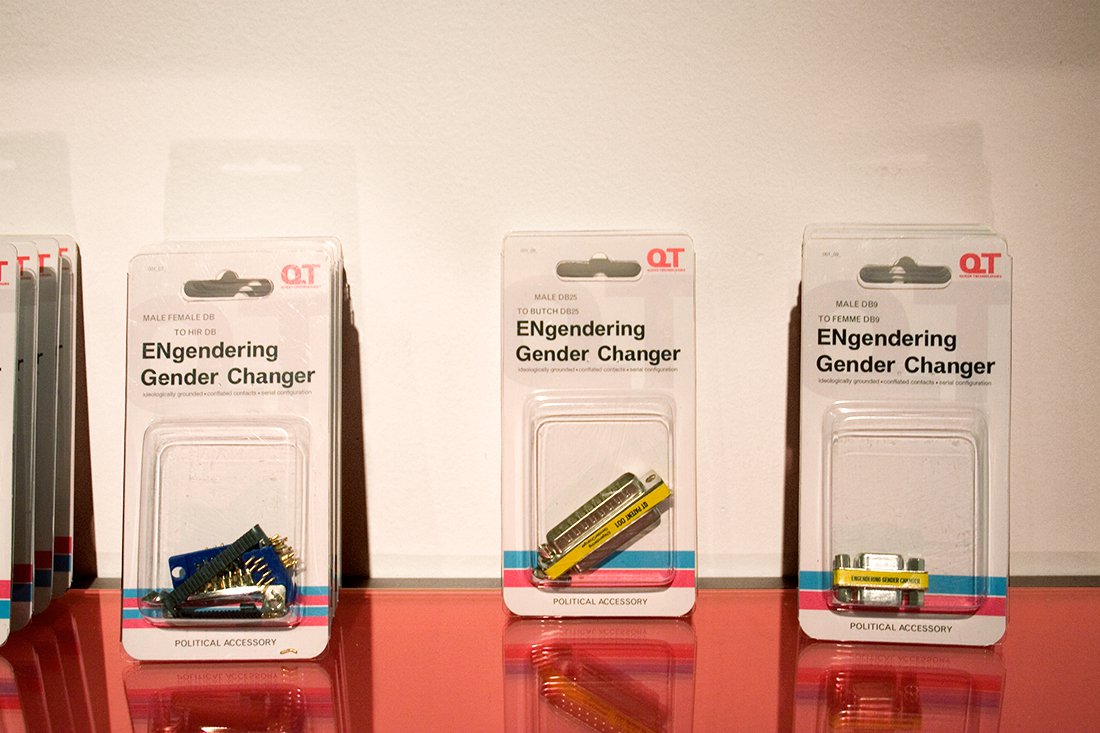
“ENgenderingGenderChangers, installation detail, Exit Strategies, New Wight Gallery, University of California, Los Angeles (2008)”, image from https://zachblas.info/works/queer-technologies/
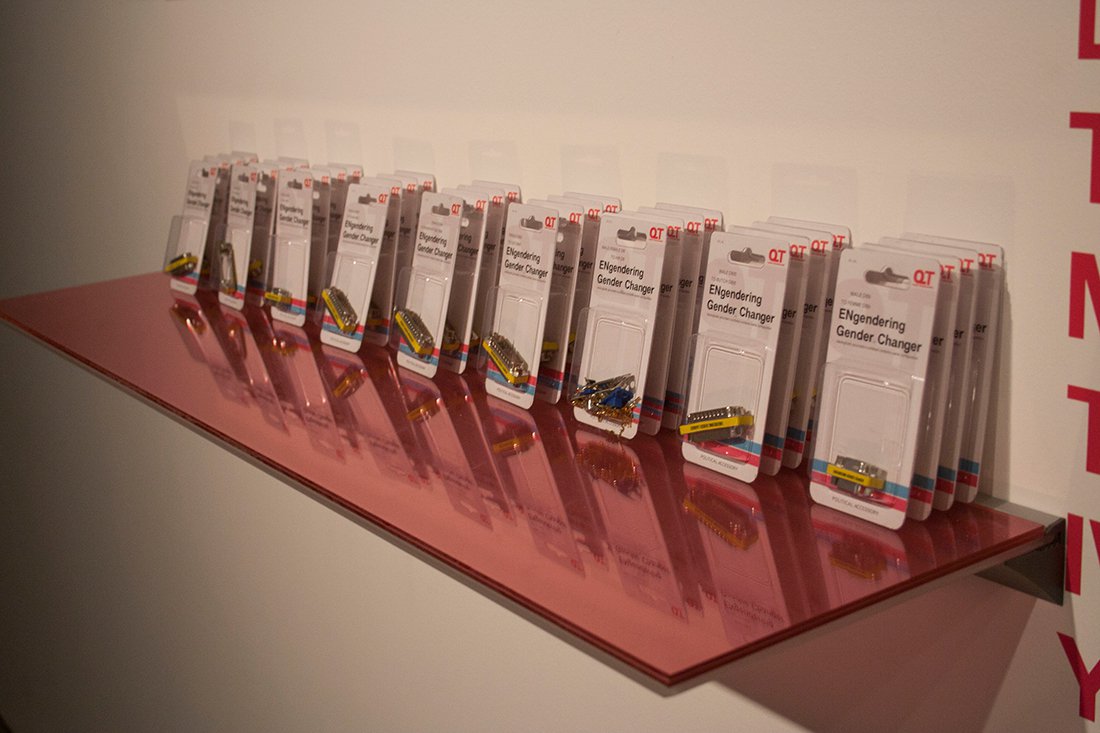
“ENgenderingGenderChangers, installation detail, Exit Strategies, New Wight Gallery, University of California, Los Angeles (2008)”, image from https://zachblas.info/works/queer-technologies/
ENgenderingGenderChangers are designed to humorously question the conflation of gender with hardware connectivity in the larger sphere of IT culture. Offering a wider range of ‘solutions’ to the male / female plug binary does not necessarily solve or better this conflation. Rather, it grossly exaggerates the problem in order to gain attention from the public. ENgenderingGenderChangers are mass produced and covertly distributed in Radioshacks, Best Buys, Circuit Cities, and other consumer electronics stores across the nation and Europe …
ENgenderingGenderChangers desire to encounter the public as a product and not as an art object, for a product demands other questions to be answered for the purchaser, regarding functionality, compatibility, and affordability. As a potential product for purchase, ENgenderingGenderChangers offer a critique of gender subordination in technological flows of viral capitalism.
2008, Zach Blas; excerpt from “Queer Technologies/ENgenderingGenderChangers,” http://users.design.ucla.edu/~zblas/thesis_website/gender_changers/engendering_gender_changers.html
https://zachblas.info/works/queer-technologies/

“ENgenderingGenderChangers, installation detail, Exit Strategies, New Wight Gallery, University of California, Los Angeles (2008)”, image from https://zachblas.info/works/queer-technologies/

“ENgenderingGenderChangers, installation detail, Exit Strategies, New Wight Gallery, University of California, Los Angeles (2008)”, image from https://zachblas.info/works/queer-technologies/
(333)
2008
transCoder: Queer Programming Anti-Language
Zach Blas
transCoder is a play on transgender and Lev Manovich’s fifth principle of new media—transcoding. Manovich writes, “to ‘transcode’ something is to translate it into another format.” Within computing and new media, Manovich identifies a “cultural layer” and a “computer layer” affecting each other: “we can say that they are being composited together. […] Cultural categories and concepts are substituted, on the level of meaning and/or language, by new ones that derive from the computer’s ontology, epistemology, and pragmatics.”
transCoder is programmed to transcode between Manovich’s cultural layer and computer layer. Specifically, as queer programming anti-language, transCoder offers libraries rooted in theories of queerness as an attempt to severe ontological and epistemological ties to dominant technologies and interrupt the flow of circulation between heteronormative culture, coding, and visual interface.
2008, Zach Blas; excerpt from “Queer Technologies/transCoder,” http://users.design.ucla.edu/~zblas/thesis_website/transcoder/transcoder.html; referred by Salome Asega
https://zachblas.info/works/queer-technologies/

“installation detail, The Unknown Ideal, Edith-Russ-Haus für Medienkunst, Oldenburg, Germany (2019)”, image from https://zachblas.info/works/queer-technologies/
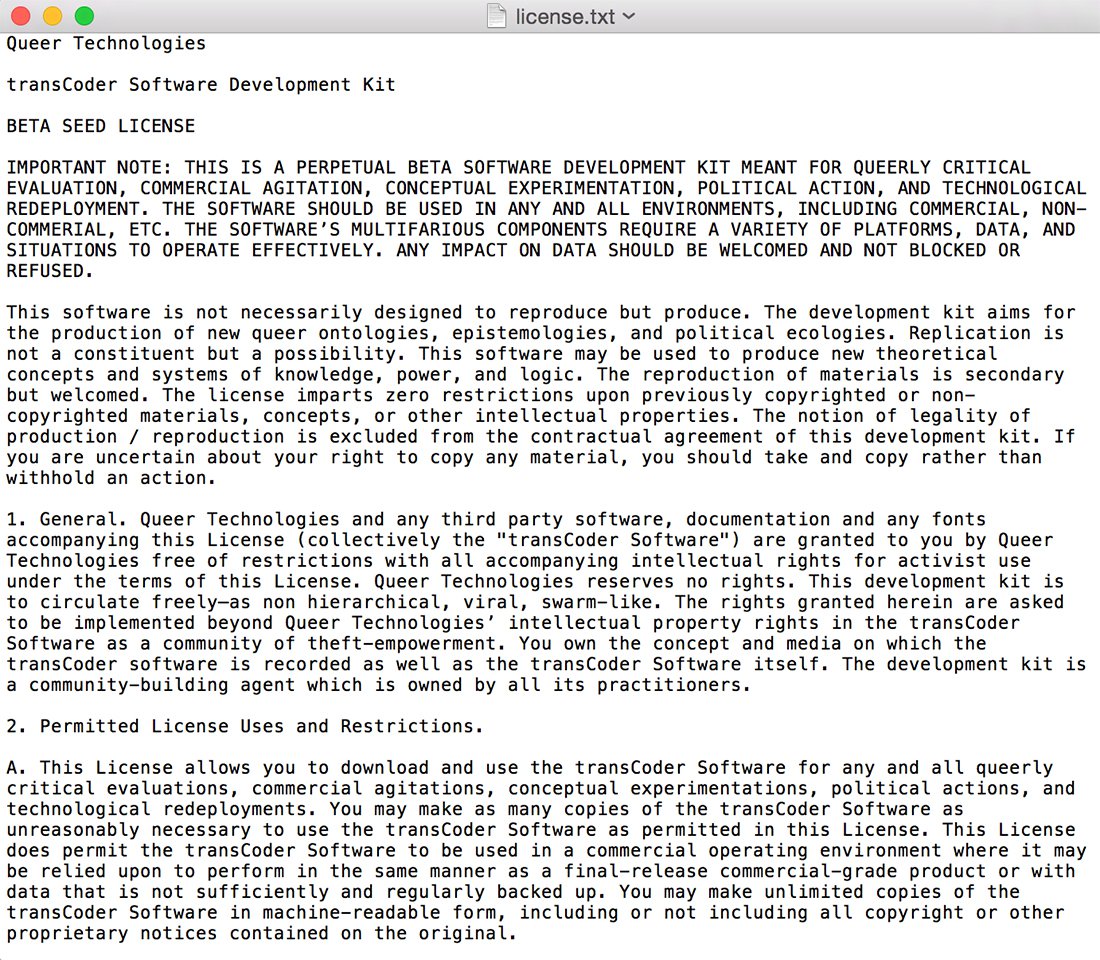
“License, excerpt, transCoder: Queer Programming Anti-Language (2008)”, image from https://zachblas.info/works/queer-technologies/
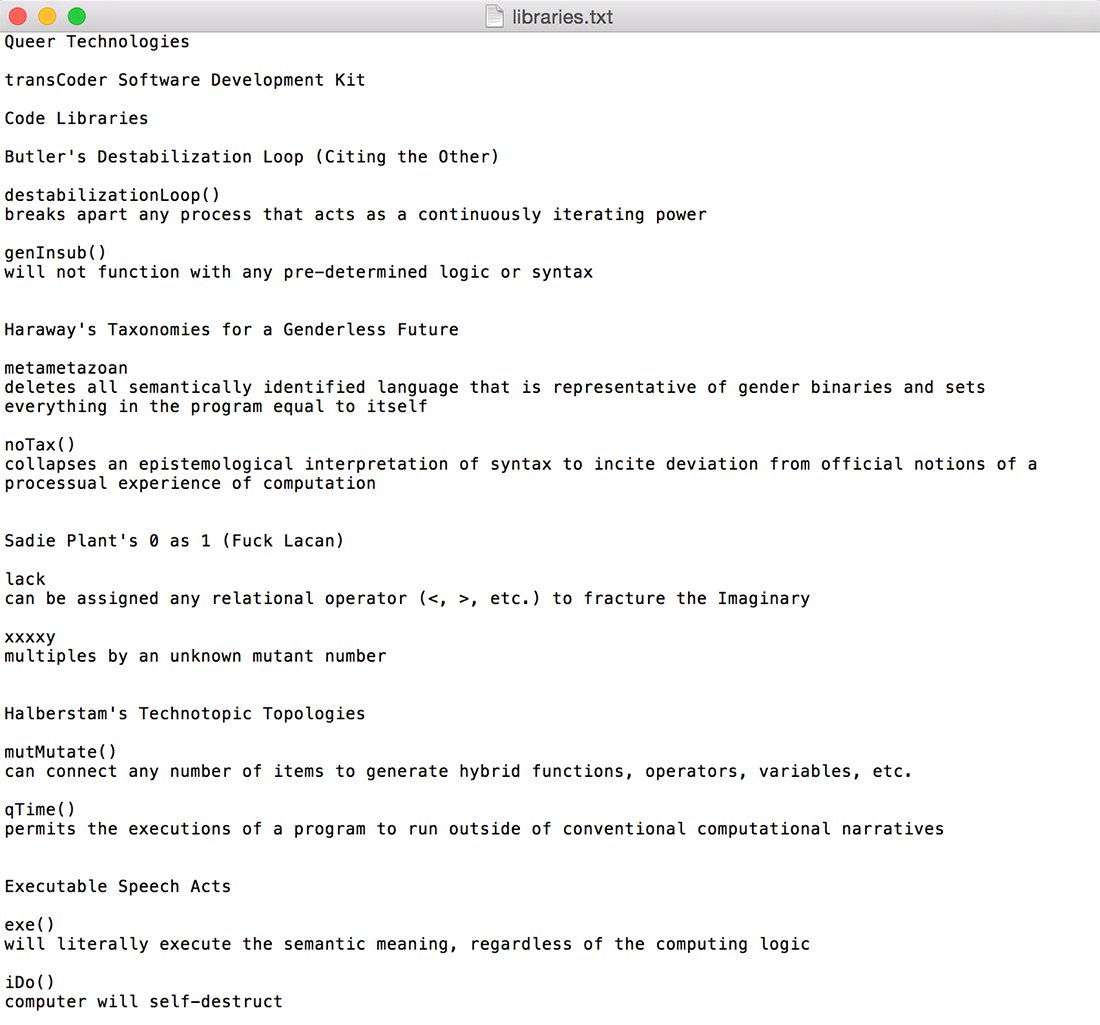
“Code Libraries, excerpt, transCoder: Queer Programming Anti-Language (2008)”, image from https://zachblas.info/works/queer-technologies/
transCoder is a play on transgender and Lev Manovich’s fifth principle of new media—transcoding. Manovich writes, “to ‘transcode’ something is to translate it into another format.” Within computing and new media, Manovich identifies a “cultural layer” and a “computer layer” affecting each other: “we can say that they are being composited together. […] Cultural categories and concepts are substituted, on the level of meaning and/or language, by new ones that derive from the computer’s ontology, epistemology, and pragmatics.”
transCoder is programmed to transcode between Manovich’s cultural layer and computer layer. Specifically, as queer programming anti-language, transCoder offers libraries rooted in theories of queerness as an attempt to severe ontological and epistemological ties to dominant technologies and interrupt the flow of circulation between heteronormative culture, coding, and visual interface.
2008, Zach Blas; excerpt from “Queer Technologies/transCoder,” http://users.design.ucla.edu/~zblas/thesis_website/transcoder/transcoder.html; referred by Salome Asega
https://zachblas.info/works/queer-technologies/

“installation detail, The Unknown Ideal, Edith-Russ-Haus für Medienkunst, Oldenburg, Germany (2019)”, image from https://zachblas.info/works/queer-technologies/
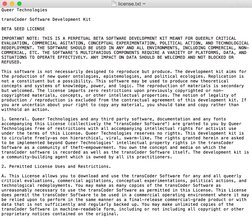
“License, excerpt, transCoder: Queer Programming Anti-Language (2008)”, image from https://zachblas.info/works/queer-technologies/
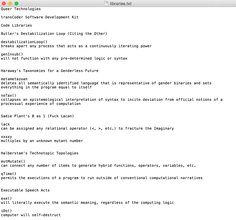
“Code Libraries, excerpt, transCoder: Queer Programming Anti-Language (2008)”, image from https://zachblas.info/works/queer-technologies/
(334)
2008
Feminist Approach to Technology (FAT)
Gayatri Buragohain
Feminist Approach to Technology (FAT) is a not‐for‐profit organization that believes in empowering women by enabling them to access, use and create technology through a feminist rights‐based framework. We believe and promote an outlook that questions and critiques the existing structures of technology and seeks to incorporate women as equal partners within it. FAT was established in 2008 and primarily operates in Delhi. We are now expanding in the states of Gujrat, Jharkhand and Bihar.
FAT envisions a world where the use and creation of technology is gender neutral. This is a world where all women have equal opportunities to learn, use and create technology, irrespective of their academic background, economic status or geographical location; an environment where women are not intimidated by new technologies but rather have an open mind to experiment with and benefit from them.
2008, Gayatri Buragohain, http://www.fat-net.org/
Delhi, Gujrat, Jharkhand, Bihar
Feminist Approach to Technology (FAT) is a not‐for‐profit organization that believes in empowering women by enabling them to access, use and create technology through a feminist rights‐based framework. We believe and promote an outlook that questions and critiques the existing structures of technology and seeks to incorporate women as equal partners within it. FAT was established in 2008 and primarily operates in Delhi. We are now expanding in the states of Gujrat, Jharkhand and Bihar.
FAT envisions a world where the use and creation of technology is gender neutral. This is a world where all women have equal opportunities to learn, use and create technology, irrespective of their academic background, economic status or geographical location; an environment where women are not intimidated by new technologies but rather have an open mind to experiment with and benefit from them.
2008, Gayatri Buragohain, http://www.fat-net.org/
Delhi, Gujrat, Jharkhand, Bihar
(335)
2008–
2013
TimeTraveller™
Skawennati
www.TimeTravellerTM.com is a website from the future. The matter of how it is able to project itself into the Internet in 2009 is currently under intense study. What is quite clear, however, is that the makers of the website possess technology that by far surpasses anything available to us today. […]
A forensic search of the html source code uncovered the contents of a press release, never actually published on the website, which gives us clues as to the identity of this person: AbTeC is proud to announce Ratorats “Hunter” Dearhouse, winner of the A.D. 2120 Most Extreme Time Traveller award, as the official spokesmodel for our premier product. Hunter is featured prominently on our latest website, and has agreed to have all of his future TimeTraveller™ adventures recorded for the TimeTraveller™ reality show. Watch for upcoming episodes in which he sails to Europe with Pochahontas in AD 1615, aids and abets the Dakota Sioux Uprising of 1862, and finds true love in Kahnawake Mohawk Territory in 2009!
2008, Skawennati, http://www.timetravellertm.com/; excerpt from “Skawennati Fragnito—Project,” Rashid & Rosetta, http://www.rashid-and-rosetta.org/ros_skawennati_e.html

artifact from http://www.timetravellertm.com/

artifact from http://www.timetravellertm.com/
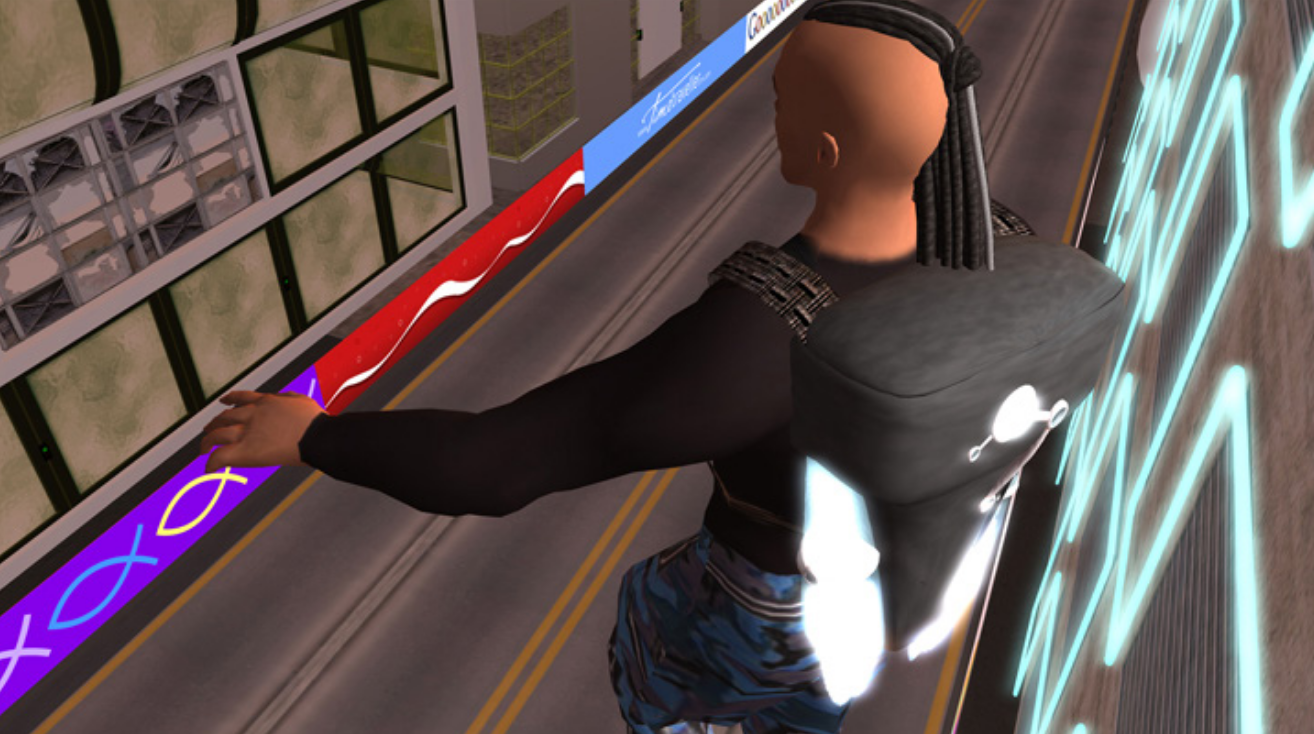
“Skawennati, TimeTravellerTM, 2008-13, machinima. Image courtesy of the artist.” image from https://www.are.na/block/8127918
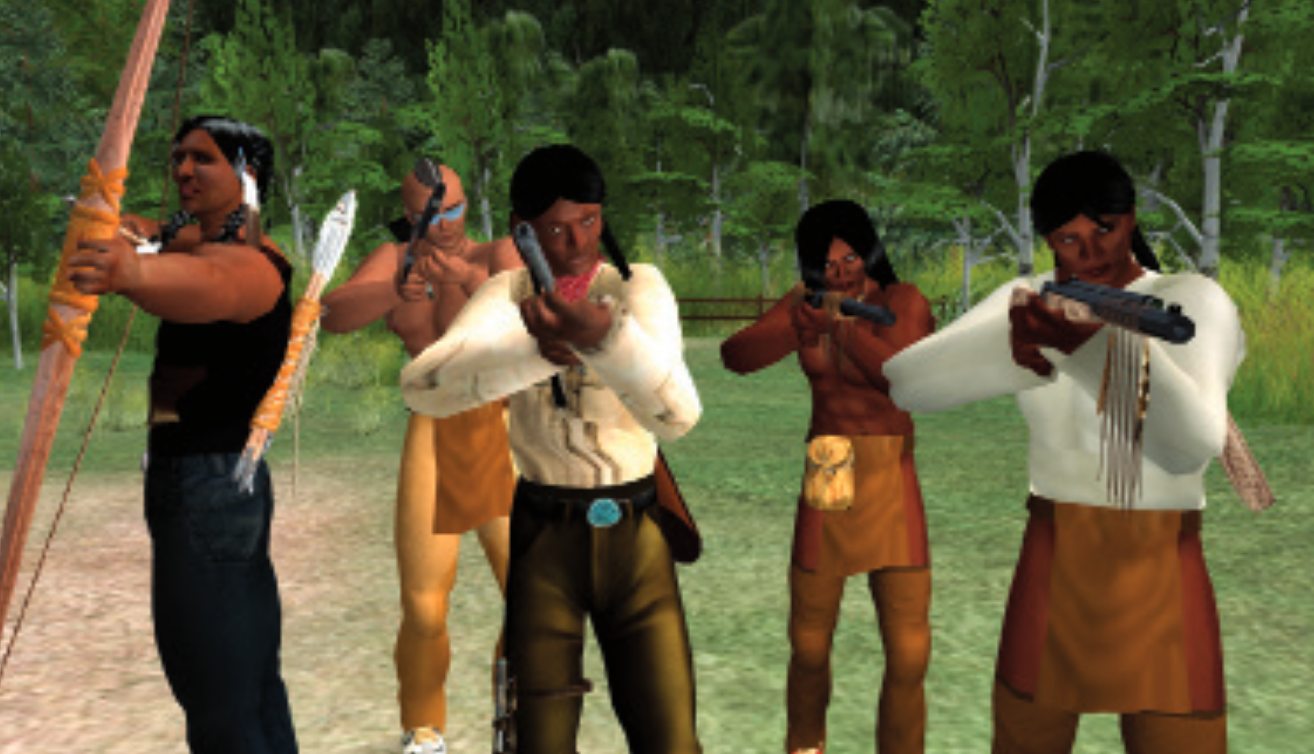
“Skawennati, TimeTravellerTM, 2008-13, machinima. Image courtesy of the artist.” image from https://www.are.na/block/8127918

Episode 8, video still 00:32, http://www.timetravellertm.com/episodes/episode08.html

artifact from http://www.timetravellertm.com/about.html
www.TimeTravellerTM.com is a website from the future. The matter of how it is able to project itself into the Internet in 2009 is currently under intense study. What is quite clear, however, is that the makers of the website possess technology that by far surpasses anything available to us today. […]
A forensic search of the html source code uncovered the contents of a press release, never actually published on the website, which gives us clues as to the identity of this person: AbTeC is proud to announce Ratorats “Hunter” Dearhouse, winner of the A.D. 2120 Most Extreme Time Traveller award, as the official spokesmodel for our premier product. Hunter is featured prominently on our latest website, and has agreed to have all of his future TimeTraveller™ adventures recorded for the TimeTraveller™ reality show. Watch for upcoming episodes in which he sails to Europe with Pochahontas in AD 1615, aids and abets the Dakota Sioux Uprising of 1862, and finds true love in Kahnawake Mohawk Territory in 2009!
2008, Skawennati, http://www.timetravellertm.com/; excerpt from “Skawennati Fragnito—Project,” Rashid & Rosetta, http://www.rashid-and-rosetta.org/ros_skawennati_e.html

artifact from http://www.timetravellertm.com/

artifact from http://www.timetravellertm.com/
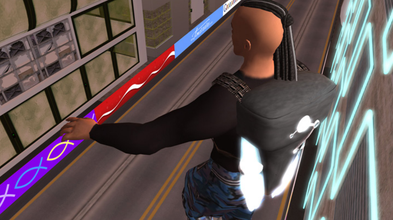
“Skawennati, TimeTravellerTM, 2008-13, machinima. Image courtesy of the artist.” image from https://www.are.na/block/8127918
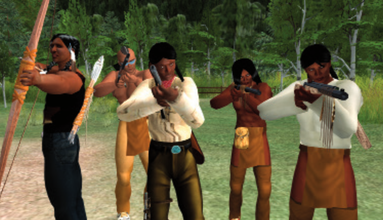
“Skawennati, TimeTravellerTM, 2008-13, machinima. Image courtesy of the artist.” image from https://www.are.na/block/8127918

Episode 8, video still 00:32, http://www.timetravellertm.com/episodes/episode08.html

artifact from http://www.timetravellertm.com/about.html
(336)
2008
Locating Cyberfeminism in Singapore: A Dialogue
Margaret Tan, Irina Aristarkhova
Irina Aristarkhova: Singapore, South Korea, and other countries in the region are, arguably, as technologically advanced as or superior to our collaborators’ home country, and potentially it might become a point of tension. Do you think that often our Western collaborators find it difficult to acknowledge this technical advancement? After all, speaking in terms of gender and technology, Singapore has more women in the technological sector, more female students, more female employees, and more computer literacy across various economic classes of population than the US.
Margaret Tan: There might be acknowledgment of the technical advancement but always with a “but.” This “but” can take many forms—what is the digital divide, the loss of freedom of expression, surveillance. They tend to skip over these advancements without a second look at how it is achieved by the people, women included. So they are more interested in looking for and at the negative aspects.
2008, Margaret Tan and Irina Aristarkhova (presentation, International Symposium of Electronic Art, Singapore Management University; National University of Singapore; Nanyang Technological University; National Museum of Singapore, Singapore, July 25–August 3, 2008), transcript, http://www.refugia.net/irina/MTIADialogue.pdf
Editor’s Note: Together with Margaret Tan and other Singapore-based colleagues and friends such as Adeline Kueh, Irina Aristarkhova challenged white, Western cyberfeminists in Amsterdam and Hamburg during the Cyberfeminist International meetings and in their collaboration with subRosa cyber feminist art collective. In this conversation, Tan expressed her views on cyberfeminist work outside of Eurocentric norms. —MS
Irina Aristarkhova: Singapore, South Korea, and other countries in the region are, arguably, as technologically advanced as or superior to our collaborators’ home country, and potentially it might become a point of tension. Do you think that often our Western collaborators find it difficult to acknowledge this technical advancement? After all, speaking in terms of gender and technology, Singapore has more women in the technological sector, more female students, more female employees, and more computer literacy across various economic classes of population than the US.
Margaret Tan: There might be acknowledgment of the technical advancement but always with a “but.” This “but” can take many forms—what is the digital divide, the loss of freedom of expression, surveillance. They tend to skip over these advancements without a second look at how it is achieved by the people, women included. So they are more interested in looking for and at the negative aspects.
2008, Margaret Tan and Irina Aristarkhova (presentation, International Symposium of Electronic Art, Singapore Management University; National University of Singapore; Nanyang Technological University; National Museum of Singapore, Singapore, July 25–August 3, 2008), transcript, http://www.refugia.net/irina/MTIADialogue.pdf
Editor’s Note: Together with Margaret Tan and other Singapore-based colleagues and friends such as Adeline Kueh, Irina Aristarkhova challenged white, Western cyberfeminists in Amsterdam and Hamburg during the Cyberfeminist International meetings and in their collaboration with subRosa cyber feminist art collective. In this conversation, Tan expressed her views on cyberfeminist work outside of Eurocentric norms. —MS
(337)
2008
Techno-Feminist View on the Open Source Software Development
Yuwei Lin
Current debate on women in free/libre open source software (FLOSS) tends to fall into the gender stereotype of men and women when coming across to the gender issue. This article stays away from a reductionism that simplifies the gender issue in the FLOSS community to the level of a fight between men and women. Instead of splitting women from men in the FLOSS development, this analysis helps motivate both men and women to work together, reduce the gender gap and improve the disadvantaged statuses of women and a wider users’ community in the FLOSS development. More importantly, it addresses not only the inequality that women face in computing, but also other inequalities that other users face, mainly emerging from the power relationships between expert and lay person (namely, developer and user) in software design. In so doing, the issue at stake is not only to create a welcome environment for women to join the FLOSS development, but also to come up with a better way of encouraging both sexes to collaborate with each other. This article starts from how FLOSS can make a difference for today’s information society, and present some successful stories of implementing FLOSS in developing countries and rural areas to empower women and the minority. Consequently, it discusses the problem of including more women and the minority in the FLOSS development through deconstructing the myth of the programming skill.
submitted by Christina Dunbar-Hester
https://www.igi-global.com/chapter/global-information-technologies/19185
Current debate on women in free/libre open source software (FLOSS) tends to fall into the gender stereotype of men and women when coming across to the gender issue. This article stays away from a reductionism that simplifies the gender issue in the FLOSS community to the level of a fight between men and women. Instead of splitting women from men in the FLOSS development, this analysis helps motivate both men and women to work together, reduce the gender gap and improve the disadvantaged statuses of women and a wider users’ community in the FLOSS development. More importantly, it addresses not only the inequality that women face in computing, but also other inequalities that other users face, mainly emerging from the power relationships between expert and lay person (namely, developer and user) in software design. In so doing, the issue at stake is not only to create a welcome environment for women to join the FLOSS development, but also to come up with a better way of encouraging both sexes to collaborate with each other. This article starts from how FLOSS can make a difference for today’s information society, and present some successful stories of implementing FLOSS in developing countries and rural areas to empower women and the minority. Consequently, it discusses the problem of including more women and the minority in the FLOSS development through deconstructing the myth of the programming skill.
submitted by Christina Dunbar-Hester
https://www.igi-global.com/chapter/global-information-technologies/19185
(338)
2008–
2011
Other World Kingdom in Second Life (OWK in SL)
Shayna Theti-Sheri, Michaal Ultsch, et al
The Other World Kingdom in Second Life (OWK in SL) was a short-lived virtual community within the online multiplayer platform Second Life from 2008-2011. The community was founded when its physical namesake, “The Other World Kingdom,” a Femdom micronation that operated out of a renovated 15th-century castle in the Rural Czech Republic since its founding in 1996, was forced to close down due to financial pressures. The physical OWK was ruled, according to its founding charter, as an "absolutist slave monarchy on the basis of a Matriarchy." Men were "slaves," and the entire nation submitted to the rules set forth by Queen Patricia the First and her Lady Senate, thus realizing the dream of a Western matriarchal society long predicted in “separatist feminist” fiction like Herland (1915). (1)
Immediately after the physical OWK’s closure in 2008, a group of fans and former citizens led by “Reverend Goddess Shayna Theti-Sheri” worked to recreate the OWK’s likeness and social structure virtually in one of the first MMO virtual worlds, Second Life (SL). In addition to the architecture of the Kingdom being reconstructed within Second Life, the most important tenet of the physical OWK, the superiority of womxn within the kingdom, also had to be adapted to the new virtual environment: no matter if your avatar was a human, a lizard-person, a demon succubus, or a werewolf, if it was playing a dominant role, it had to express a “female” identity. In the OWK in SL, all encounters between players were “rule-based,” just like they were within the physical kingdom. In Second Life, these rules were informed by the community's governance by a rotating, decentralized “Lady Senate” according to FemDom principles and also by Second Life’s user policies and gameplay mechanics. The virtual reconstruction of the Other World Kingdom in Second Life forced the community to confront a new media format wherein citizens explored and negotiated new modes of being and relating to each other in cyberspace, including virtual intimacy, avatarization, digital gender identity, and more-than-human expression.
(1) Opinions within the BDSM community differ on race play and whether white and non-Black Dominants and submissives should use terms like “slave” and “slave auction” to describe kink play. These terms are prevalent in many BDSM spaces, and their use often goes unquestioned, particularly in spaces that are mostly white and/or primarily controlled by white people. However, the dynamic is not so simple for many Black kinksters. Some people intentionally choose the terms “Dominant/submissive” rather than “Master/slave” in recognition of the racist legacy behind the latter terminology. Gender theorist Ariane Cruz has written extensively about the ways that race play can feel problematic and harmful in many contexts, but can also be a powerful tool of sexual reclamation for Black kinksters.
Shayna Theti-Sheri, Michaal Ultsch, et al, 2008–2011, 2016–2017; submitted by Ian Erickson
https://replayingtheotherworldkingdom.com/
Second Life
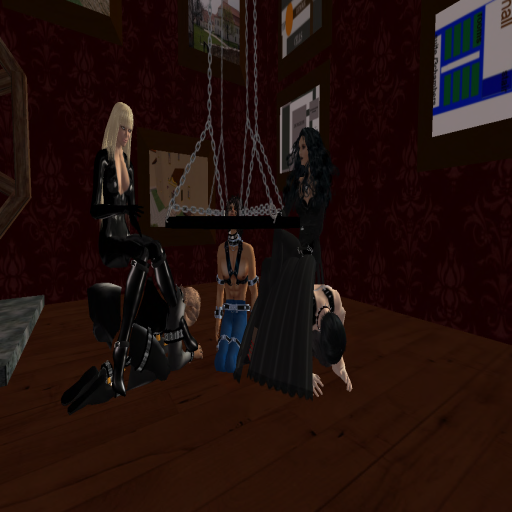
“Shayna Theti-Sheri” sitting with a mistress from the real-life OWK at Club Wanda in Second Life at one of the tables. 2nd OWK in SL iteration. 2010.

“Shayna Paine” dominating her slave “pain unsustainable”. 1st OWK in SL iteration. 2008.
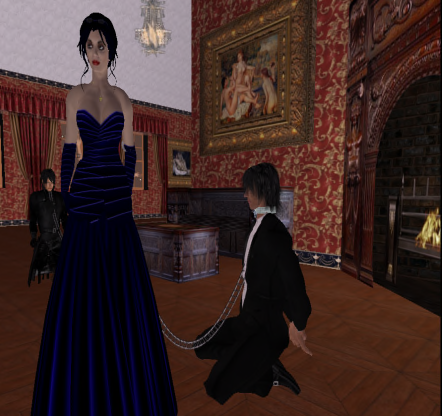
OWK lady senate member “Shayna Paine” with her slave “Erasmus” in the OWK castle replica. 2nd OWK in SL iteration. 2009.
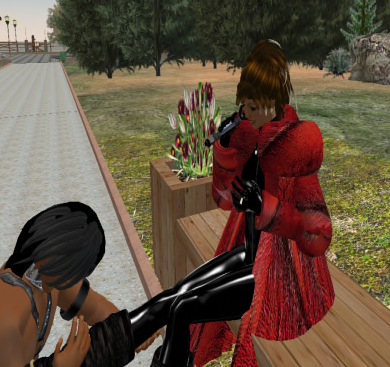
Sublime lady getting served. 1st OWK in SL iteration. 2007.
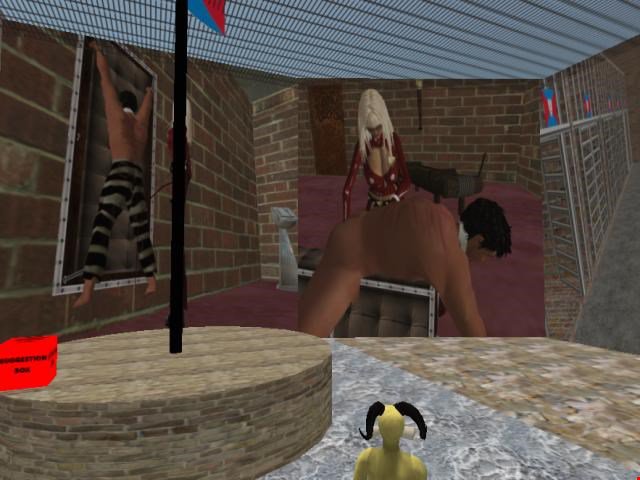
The original OWK in SL sim dungeon, featuring real-life OWK flags. 1st OWK in SL iteration. 2007.
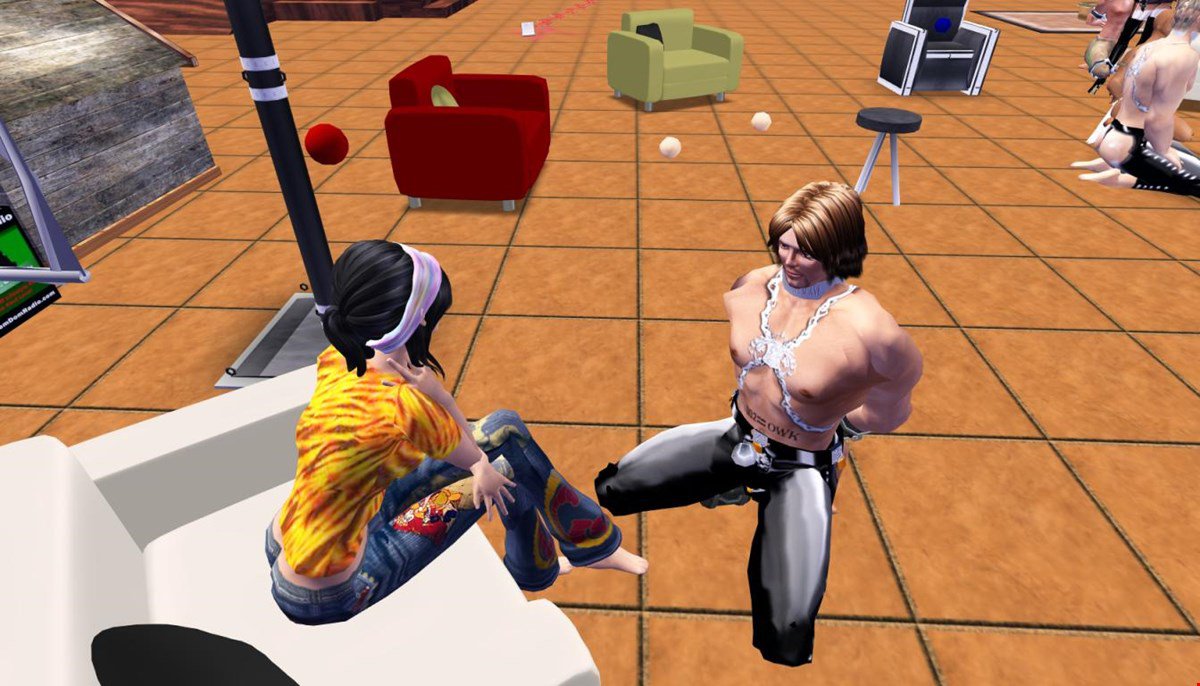
Sitting area in the OWK courtyard. 2nd OWK in SL iteration. 2009.

Slave greeter at greeting center for. 3rd OWK in SL iteration. 2016.
The Other World Kingdom in Second Life (OWK in SL) was a short-lived virtual community within the online multiplayer platform Second Life from 2008-2011. The community was founded when its physical namesake, “The Other World Kingdom,” a Femdom micronation that operated out of a renovated 15th-century castle in the Rural Czech Republic since its founding in 1996, was forced to close down due to financial pressures. The physical OWK was ruled, according to its founding charter, as an "absolutist slave monarchy on the basis of a Matriarchy." Men were "slaves," and the entire nation submitted to the rules set forth by Queen Patricia the First and her Lady Senate, thus realizing the dream of a Western matriarchal society long predicted in “separatist feminist” fiction like Herland (1915). (1)
Immediately after the physical OWK’s closure in 2008, a group of fans and former citizens led by “Reverend Goddess Shayna Theti-Sheri” worked to recreate the OWK’s likeness and social structure virtually in one of the first MMO virtual worlds, Second Life (SL). In addition to the architecture of the Kingdom being reconstructed within Second Life, the most important tenet of the physical OWK, the superiority of womxn within the kingdom, also had to be adapted to the new virtual environment: no matter if your avatar was a human, a lizard-person, a demon succubus, or a werewolf, if it was playing a dominant role, it had to express a “female” identity. In the OWK in SL, all encounters between players were “rule-based,” just like they were within the physical kingdom. In Second Life, these rules were informed by the community's governance by a rotating, decentralized “Lady Senate” according to FemDom principles and also by Second Life’s user policies and gameplay mechanics. The virtual reconstruction of the Other World Kingdom in Second Life forced the community to confront a new media format wherein citizens explored and negotiated new modes of being and relating to each other in cyberspace, including virtual intimacy, avatarization, digital gender identity, and more-than-human expression.
(1) Opinions within the BDSM community differ on race play and whether white and non-Black Dominants and submissives should use terms like “slave” and “slave auction” to describe kink play. These terms are prevalent in many BDSM spaces, and their use often goes unquestioned, particularly in spaces that are mostly white and/or primarily controlled by white people. However, the dynamic is not so simple for many Black kinksters. Some people intentionally choose the terms “Dominant/submissive” rather than “Master/slave” in recognition of the racist legacy behind the latter terminology. Gender theorist Ariane Cruz has written extensively about the ways that race play can feel problematic and harmful in many contexts, but can also be a powerful tool of sexual reclamation for Black kinksters.
Shayna Theti-Sheri, Michaal Ultsch, et al, 2008–2011, 2016–2017; submitted by Ian Erickson
https://replayingtheotherworldkingdom.com/
Second Life
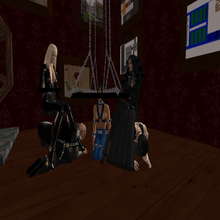
“Shayna Theti-Sheri” sitting with a mistress from the real-life OWK at Club Wanda in Second Life at one of the tables. 2nd OWK in SL iteration. 2010.

“Shayna Paine” dominating her slave “pain unsustainable”. 1st OWK in SL iteration. 2008.
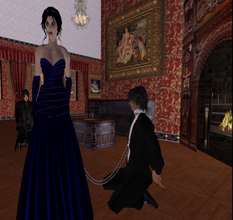
OWK lady senate member “Shayna Paine” with her slave “Erasmus” in the OWK castle replica. 2nd OWK in SL iteration. 2009.
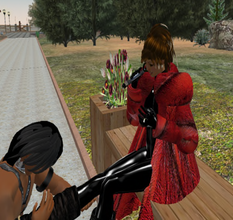
Sublime lady getting served. 1st OWK in SL iteration. 2007.

The original OWK in SL sim dungeon, featuring real-life OWK flags. 1st OWK in SL iteration. 2007.
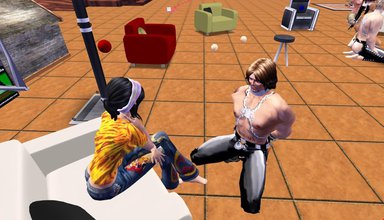
Sitting area in the OWK courtyard. 2nd OWK in SL iteration. 2009.
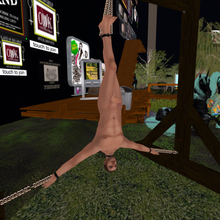
Slave greeter at greeting center for. 3rd OWK in SL iteration. 2016.
(339)
2009
Rethinking Cyberfeminism(s): Race, Gender, and Embodiment
Jessie Daniels
Cyberfeminism is neither a single theory nor a feminist movement with a clearly articulated political agenda. Rather, “cyberfeminism” refers to a range of theories, debates, and practices about the relationship between gender and digital culture, so it is perhaps more accurate to refer to the plural, “cyberfeminism(s).” Within and among cyberfeminism(s) there are a number of distinct theoretical and political stances in relation to Internet technology and gender as well as a noticeable ambivalence about a unified feminist political project. Further, some distinguish between the “old” cyberfeminism, characterized by a utopian vision of a postcorporeal woman corrupting patriarchy, and a “new” cyberfeminism, which is more about “confronting the top-down from the bottom-up.” Thus, any attempt to write about cyberfeminism as if it were a monolith inevitably results in a narrative that is inaccurately totalizing. However, what provides common ground among these variants of cyberfeminism(s) is the sustained focus on gender and digital technologies and on cyberfeminist practices.
2009, Jessie Daniels, in “Technologies,” eds. Karen Throsby and Sarah Hodges, special issue, Women’s Studies Quarterly 37, nos. 1 & 2 (Spring/Summer 2009): pp. 101–124; excerpt pp. 102–103
https://www.jstor.org/stable/27655141?seq=1#page_scan_tab_contents https://www.are.na/block/8312813
Cyberfeminism is neither a single theory nor a feminist movement with a clearly articulated political agenda. Rather, “cyberfeminism” refers to a range of theories, debates, and practices about the relationship between gender and digital culture, so it is perhaps more accurate to refer to the plural, “cyberfeminism(s).” Within and among cyberfeminism(s) there are a number of distinct theoretical and political stances in relation to Internet technology and gender as well as a noticeable ambivalence about a unified feminist political project. Further, some distinguish between the “old” cyberfeminism, characterized by a utopian vision of a postcorporeal woman corrupting patriarchy, and a “new” cyberfeminism, which is more about “confronting the top-down from the bottom-up.” Thus, any attempt to write about cyberfeminism as if it were a monolith inevitably results in a narrative that is inaccurately totalizing. However, what provides common ground among these variants of cyberfeminism(s) is the sustained focus on gender and digital technologies and on cyberfeminist practices.
2009, Jessie Daniels, in “Technologies,” eds. Karen Throsby and Sarah Hodges, special issue, Women’s Studies Quarterly 37, nos. 1 & 2 (Spring/Summer 2009): pp. 101–124; excerpt pp. 102–103
https://www.jstor.org/stable/27655141?seq=1#page_scan_tab_contents https://www.are.na/block/8312813
(340)
2009
Cyberfeminism in the Arab World: Analysis of Gender Stereotypes in Arab Women’s Web Sites
Dalia Al Nimr
Cyberfeminism is a concept that emerged in the West; it may be non-existent in the Arab world or may take on a different definition. […] One could also argue that if most of the Arab sites portray the same image and content, these users do not have a viable alternative [to discussion forums]. The Internet is undoubtedly an effective tool, but one that is apparently not utilized for feminist purposes in the Arab world. An alternative approach to cyberfeminism, namely the avant-garde approach in which females challenge socially acceptable gender values and take up dissident identities in cyberspace, is not a viable solution for propagating a more positive image of Arab women online. […] The mainstream approach to cyberfeminism whereby women are able to appropriate the technology for their own needs is the path to upgrading Arab women’s image online.
2009, Dalia Al Nimr (Saarbrücken, Germany: VDM Verlag, 2009); excerpt p. 76
Cyberfeminism is a concept that emerged in the West; it may be non-existent in the Arab world or may take on a different definition. […] One could also argue that if most of the Arab sites portray the same image and content, these users do not have a viable alternative [to discussion forums]. The Internet is undoubtedly an effective tool, but one that is apparently not utilized for feminist purposes in the Arab world. An alternative approach to cyberfeminism, namely the avant-garde approach in which females challenge socially acceptable gender values and take up dissident identities in cyberspace, is not a viable solution for propagating a more positive image of Arab women online. […] The mainstream approach to cyberfeminism whereby women are able to appropriate the technology for their own needs is the path to upgrading Arab women’s image online.
2009, Dalia Al Nimr (Saarbrücken, Germany: VDM Verlag, 2009); excerpt p. 76
(341)
2009–
2014
Devotion Gallery
Phoenix Perry
Devotion is a Williamsburg gallery focused on the intersection of art, science, new media, and design. We present cross-disciplinary work that draws from architecture, computation, gaming, biology, fabrication, interface design, open-source communities, cloud computing, sound, and complexity. We are always seeking out artists who use new technologies or introduce new paradigms. We collaborate with the distinct purpose of giving the New York arts community a venue that radically re-envisions how art and technology negotiate relationships within our culture. Together, we are fostering a community that generates dialogue between art, technology, and scientific research.
2009, Phoenix Perry, http://areyoudevoted.squarespace.com/; referred by Charlotte Webb
Devotion is a Williamsburg gallery focused on the intersection of art, science, new media, and design. We present cross-disciplinary work that draws from architecture, computation, gaming, biology, fabrication, interface design, open-source communities, cloud computing, sound, and complexity. We are always seeking out artists who use new technologies or introduce new paradigms. We collaborate with the distinct purpose of giving the New York arts community a venue that radically re-envisions how art and technology negotiate relationships within our culture. Together, we are fostering a community that generates dialogue between art, technology, and scientific research.
2009, Phoenix Perry, http://areyoudevoted.squarespace.com/; referred by Charlotte Webb
(342)
2009
Digital Diasporas: Identity and Transnational Engagement
Jennifer M. Brinkerhoff
“In the first full-length scholarly study of the increasingly important phenomenon of digital diasporas, Jennifer M. Brinkerhoff examines how immigrants who still feel a connection to their country of origin use the Internet. She argues that digital diasporas can ease security concerns in both the homeland and the host society, improve diaspora members’ quality of life in the host society, and contribute to socio-economic development in the homeland. Drawing on case studies of nine digital diaspora organizations, Brinkerhoff's research supplies new empirical material regarding digital diasporas and their potential security and development impacts. She also explores their impact on identity negotiation, arguing that digital diasporas create communities and organizations that represent hybrid identities and encourage solidarity, identity, and material benefits among their members. The book also explores these communities’ implications for policy and practice.” —Summary by the publisher Cambridge University Press
“In the first full-length scholarly study of the increasingly important phenomenon of digital diasporas, Jennifer M. Brinkerhoff examines how immigrants who still feel a connection to their country of origin use the Internet. She argues that digital diasporas can ease security concerns in both the homeland and the host society, improve diaspora members’ quality of life in the host society, and contribute to socio-economic development in the homeland. Drawing on case studies of nine digital diaspora organizations, Brinkerhoff's research supplies new empirical material regarding digital diasporas and their potential security and development impacts. She also explores their impact on identity negotiation, arguing that digital diasporas create communities and organizations that represent hybrid identities and encourage solidarity, identity, and material benefits among their members. The book also explores these communities’ implications for policy and practice.” —Summary by the publisher Cambridge University Press
(343)
2009
Digital Diaspora: A Race for Cyberspace
Anna Everett
Deftly interweaving history, culture, and critical theory, Anna Everett traces the rise of black participation in cyberspace, particularly during the early years of the Internet. She challenges the problematic historical view of black people as quintessential information-age outsiders or poster children for the digital divide by uncovering their early technolust and repositioning them as eager technology adopters and consumers, and thus as co-constituent elements in the information technology revolution. She offers several case studies that include lessons learned from early adoption of the Internet by the Association of Nigerians Living Abroad and their Niajanet virtual community, the grassroots organizing efforts that led to the phenomenally successful Million Woman March, the migration of several historic black presses online, and an interventionist critique of race in contemporary video games. Ultimately, Digital Diaspora shows how African Americans and African diasporic peoples developed the necessary technomastery to ride in the front of the bus on the information superhighway.
2009, Anna Everett (New York: State University of New York Press, 2009); excerpt from State University of New York Press
http://www.sunypress.edu/p-4722-digital-diaspora.aspx
Deftly interweaving history, culture, and critical theory, Anna Everett traces the rise of black participation in cyberspace, particularly during the early years of the Internet. She challenges the problematic historical view of black people as quintessential information-age outsiders or poster children for the digital divide by uncovering their early technolust and repositioning them as eager technology adopters and consumers, and thus as co-constituent elements in the information technology revolution. She offers several case studies that include lessons learned from early adoption of the Internet by the Association of Nigerians Living Abroad and their Niajanet virtual community, the grassroots organizing efforts that led to the phenomenally successful Million Woman March, the migration of several historic black presses online, and an interventionist critique of race in contemporary video games. Ultimately, Digital Diaspora shows how African Americans and African diasporic peoples developed the necessary technomastery to ride in the front of the bus on the information superhighway.
2009, Anna Everett (New York: State University of New York Press, 2009); excerpt from State University of New York Press
http://www.sunypress.edu/p-4722-digital-diaspora.aspx
(344)
2009
FOSSchix
Free and Open Source Software Chix—FOSSchix—es una red Internacional de Mujeres que promueven el Software Libre, en Colombia nos denominamos FOSSchix Colombia y somos una comunidad creada por y para mujeres colombianas que se interesan en las bondades del software y la cultura libre. El trabajo que realizamos es motivar a las mujeres para que participen y se inicien en el mundo del software libre ya sea en el desarrollo, investigación o difusión y hagan parte activa de la Cultura Libre.
Free and Open Source Software Chix—FOSSchix—is an international network of women who promote Free Software. In Colombia we are called FOSSchix Colombia and we are a community created by and for Colombian women who are interested in the benefits of software and free culture. The work we do is to motivate women to participate and start in the world of free software either in development, research or dissemination and become an active part of free culture.
https://www.facebook.com/FOSSchixco
Colombia
Free and Open Source Software Chix—FOSSchix—es una red Internacional de Mujeres que promueven el Software Libre, en Colombia nos denominamos FOSSchix Colombia y somos una comunidad creada por y para mujeres colombianas que se interesan en las bondades del software y la cultura libre. El trabajo que realizamos es motivar a las mujeres para que participen y se inicien en el mundo del software libre ya sea en el desarrollo, investigación o difusión y hagan parte activa de la Cultura Libre.
Free and Open Source Software Chix—FOSSchix—is an international network of women who promote Free Software. In Colombia we are called FOSSchix Colombia and we are a community created by and for Colombian women who are interested in the benefits of software and free culture. The work we do is to motivate women to participate and start in the world of free software either in development, research or dissemination and become an active part of free culture.
https://www.facebook.com/FOSSchixco
Colombia
(345)
2009
Feminist Theories of Technology
Judy Wajcman
Feminist theories of technology have come a long way over the last quarter of a century. The expanding engagement at the intersection of feminist scholarship and science and technology studies (STS) has enriched both fields immeasurably, and I will largely focus my reflections on the literature associated with these sites. I begin by highlighting the continuities as well as the differences between contemporary and earlier feminist debates on technology. Current approaches focus on the mutual shaping of gender and technology, in which technology is conceptualized as both a source and consequence of gender relations. In avoiding both technological determinism and gender essentialism, such theories emphasize that the gender-technology relationship is fluid and situated. These deliberations highlight how processes of technical change can influence gender power relations. A feminist politics of technology is thus key to achieving gender equality.
2009, Judy Wajcman, Cambridge Journal of Economics 34, no. 1 (January 2010): pp. 143–152; excerpt from abstract
https://doi.org/10.1093/cje/ben057
Feminist theories of technology have come a long way over the last quarter of a century. The expanding engagement at the intersection of feminist scholarship and science and technology studies (STS) has enriched both fields immeasurably, and I will largely focus my reflections on the literature associated with these sites. I begin by highlighting the continuities as well as the differences between contemporary and earlier feminist debates on technology. Current approaches focus on the mutual shaping of gender and technology, in which technology is conceptualized as both a source and consequence of gender relations. In avoiding both technological determinism and gender essentialism, such theories emphasize that the gender-technology relationship is fluid and situated. These deliberations highlight how processes of technical change can influence gender power relations. A feminist politics of technology is thus key to achieving gender equality.
2009, Judy Wajcman, Cambridge Journal of Economics 34, no. 1 (January 2010): pp. 143–152; excerpt from abstract
https://doi.org/10.1093/cje/ben057
(346)
2009
Adventures from Bedrooms of African Women
Nana Darkoa Sekyiamah, Malaka Grant, Fatima Derby
“Adventures from the Bedrooms of African Women was started in January 2009 by Nana Darkoa Sekyiamah and Malaka Grant as a space for African Women to share experiences of Sex and our diverse Sexualities. The blog is managed by Fatima Derby who also writes for the blog alongside Guest Contributors. Posts on the blog are generally based on the personal experiences of contributors, as well as random sources of inspiration including interesting articles, conversations with friends, books we have read, good sex, bad sex, bad kissers… It is our hope that the blog provides a safe space where African women can openly discuss a variety of sex and sexuality issues with the intention of learning from each other, having pleasurable and safer sex and encouraging continuous sex education for adults.”

None
“Adventures from the Bedrooms of African Women was started in January 2009 by Nana Darkoa Sekyiamah and Malaka Grant as a space for African Women to share experiences of Sex and our diverse Sexualities. The blog is managed by Fatima Derby who also writes for the blog alongside Guest Contributors. Posts on the blog are generally based on the personal experiences of contributors, as well as random sources of inspiration including interesting articles, conversations with friends, books we have read, good sex, bad sex, bad kissers… It is our hope that the blog provides a safe space where African women can openly discuss a variety of sex and sexuality issues with the intention of learning from each other, having pleasurable and safer sex and encouraging continuous sex education for adults.”

None
(347)
2009
Mz* Baltazar’s Lab
Stefanie Wuschitz, Rodgarkia-Dara, Patrícia J. Reis, Ana Loureiro Fernandes, Sophie Thun, Zuzanna Zajac
Mz Baltazar’s Lab versucht einen Raum zu schaffen, in dem angstfrei mit Technik experimentiert werden kann! Ein kreatives Umfeld für Aktivismus und provokatives Denken. Wir bemühen uns, den Raum so barrierefrei, inkludierend, offen, sicher und autonom zu machen, wie möglich, um sowohl als Menschen und als auch als Gemeinschaft zu wachsen.
Mz Baltazar’s Lab aims at generating a culture of fearless making! An environment that fosters creativity, activism and provocative thinking! We try to build an accessible, inclusive, open, safer and radical space, from which to evolve as people and as community. Open Source Technology is at the root of our philosophy, it enables us to share and collaborate without restrictions. We need this space to experiment with things as gender, hardware or ourselves.
2009, Stefanie Wuschitz, Rodgarkia-Dara, Patrícia J. Reis, Ana Loureiro Fernandes, Sophie Thun, and Zuzanna Zajac, http://www.mzbaltazarslaboratory.org/
Editor’s Note: Due to the markdown used on the Cyberfeminism Index, the asterisk after Mz in the excerpt has been removed.
Vienna

Logo from http://www.mzbaltazarslaboratory.org/
Mz Baltazar’s Lab versucht einen Raum zu schaffen, in dem angstfrei mit Technik experimentiert werden kann! Ein kreatives Umfeld für Aktivismus und provokatives Denken. Wir bemühen uns, den Raum so barrierefrei, inkludierend, offen, sicher und autonom zu machen, wie möglich, um sowohl als Menschen und als auch als Gemeinschaft zu wachsen.
Mz Baltazar’s Lab aims at generating a culture of fearless making! An environment that fosters creativity, activism and provocative thinking! We try to build an accessible, inclusive, open, safer and radical space, from which to evolve as people and as community. Open Source Technology is at the root of our philosophy, it enables us to share and collaborate without restrictions. We need this space to experiment with things as gender, hardware or ourselves.
2009, Stefanie Wuschitz, Rodgarkia-Dara, Patrícia J. Reis, Ana Loureiro Fernandes, Sophie Thun, and Zuzanna Zajac, http://www.mzbaltazarslaboratory.org/
Editor’s Note: Due to the markdown used on the Cyberfeminism Index, the asterisk after Mz in the excerpt has been removed.
Vienna

Logo from http://www.mzbaltazarslaboratory.org/
(348)
2009–
2017
Fembot
Carol Stabile
At Fembot, we’re interested in sharing strategies for resisting or mitigating these attacks in online spaces with our members and supporters. To that end, and for the next few months, Fembot will feature a series of anonymous submissions for a section called “The Fembot ToolKit,” published in our Fembot Labs section. Specifically, we’ll be sharing anonymous advice from members that foregrounds strategies for coping and resistance. Our work with survivors of sexual violence has taught us that it makes a difference for people to know that they are not alone in these experiences. Sharing the strategies that we have developed to protect ourselves, survive, and resist can give our members tools they can use to do the same.
2009, https://fembot.adanewmedia.org/
At Fembot, we’re interested in sharing strategies for resisting or mitigating these attacks in online spaces with our members and supporters. To that end, and for the next few months, Fembot will feature a series of anonymous submissions for a section called “The Fembot ToolKit,” published in our Fembot Labs section. Specifically, we’ll be sharing anonymous advice from members that foregrounds strategies for coping and resistance. Our work with survivors of sexual violence has taught us that it makes a difference for people to know that they are not alone in these experiences. Sharing the strategies that we have developed to protect ourselves, survive, and resist can give our members tools they can use to do the same.
2009, https://fembot.adanewmedia.org/
(349)
2009
GeekGirl Meetup
Heidi Harman, Andie Nordgren
GeekGirl Meetup is a feminist network for people interested in all things tech, design, and startups. Our ambition is to highlight female role models in the industry, create networks for knowledge exchange, mentoring and sharing ideas—and, of course, to have fun! We talk regularly at events in order to encourage others to do so. We can also provide a list of other great women within talking in the industry. If you're looking for a great speaker, look no further; get in touch. We arrange monthly breakfast meetups and a yearly conference thus creating a platform for all participants to share their knowledge and inspiring stories with other GeekGirls. The network started in Sweden in 2009 by two ladies who were missing female participation at tech conferences. They decided that a tech conference with only female speakers was the way forward and the GeekGirl movement was born.
2009, Heidi Harman and Andie Nordgren, https://geekgirlmeetup.com/; excerpt from http://www.geekgirlmeetup.co.uk/
global
GeekGirl Meetup is a feminist network for people interested in all things tech, design, and startups. Our ambition is to highlight female role models in the industry, create networks for knowledge exchange, mentoring and sharing ideas—and, of course, to have fun! We talk regularly at events in order to encourage others to do so. We can also provide a list of other great women within talking in the industry. If you're looking for a great speaker, look no further; get in touch. We arrange monthly breakfast meetups and a yearly conference thus creating a platform for all participants to share their knowledge and inspiring stories with other GeekGirls. The network started in Sweden in 2009 by two ladies who were missing female participation at tech conferences. They decided that a tech conference with only female speakers was the way forward and the GeekGirl movement was born.
2009, Heidi Harman and Andie Nordgren, https://geekgirlmeetup.com/; excerpt from http://www.geekgirlmeetup.co.uk/
global
(350)
2009
Ciberfeminismo: Bases y Propuestas en un Mundo Global [Cyberfeminism: Bases and Proposals in a Global World]
Remedios Zafra
La inmersión en el mundo virtual tiene su precio. Internet puede ser tan singular como repetitivo, tan heterogéneo como homogeneizado, tan violento como aburrido. Como todo nuevo espacio, en un principio parecía estar cargado de nuevas posibilidades y desafíos para las mujeres. Internet, una estructura horizontal de comunicación, esbozaba un panorama desjerarquizado repleto de atractivos para la acción social y el feminismo. Estar en Internet para las mujeres, como para todos aquellos otros excluidos hasta hace poco de la historia oficial, ha tenido desde el comienzo de la socialización del medio un valor añadido, la sensación de que los espacios por hacer ofrecen más posibilidades para la no-repetición de los viejos modelos de jerarquización social, más posibilidades para imaginar las nuevas condiciones creativas, sociales y políticas de un mundo en red.
Immersion in the virtual world has its price. The Internet can be as unique as it is repetitive, as heterogeneous as it is homogenized, as violent as it is boring. Like any new space, at first it seemed to be loaded with new possibilities and challenges for women. The Internet, a horizontal communication structure, outlined a de-hierarchical panorama full of attractions for social action and feminism. Being on the Internet for women, as for all those others excluded until recently from official history, has had an added value since the beginning of the socialization of the medium, the feeling that the spaces to be made offer more possibilities for the non-repetition of the old models of social hierarchy, more possibilities to imagine the new creative, social and political conditions of a networked world.
2009, Remedios Zafra, https://web.archive.org/web/20060211124406/http://www.2-red.net/mcv/pensamiento/tx/text_rz3.html
La inmersión en el mundo virtual tiene su precio. Internet puede ser tan singular como repetitivo, tan heterogéneo como homogeneizado, tan violento como aburrido. Como todo nuevo espacio, en un principio parecía estar cargado de nuevas posibilidades y desafíos para las mujeres. Internet, una estructura horizontal de comunicación, esbozaba un panorama desjerarquizado repleto de atractivos para la acción social y el feminismo. Estar en Internet para las mujeres, como para todos aquellos otros excluidos hasta hace poco de la historia oficial, ha tenido desde el comienzo de la socialización del medio un valor añadido, la sensación de que los espacios por hacer ofrecen más posibilidades para la no-repetición de los viejos modelos de jerarquización social, más posibilidades para imaginar las nuevas condiciones creativas, sociales y políticas de un mundo en red.
Immersion in the virtual world has its price. The Internet can be as unique as it is repetitive, as heterogeneous as it is homogenized, as violent as it is boring. Like any new space, at first it seemed to be loaded with new possibilities and challenges for women. The Internet, a horizontal communication structure, outlined a de-hierarchical panorama full of attractions for social action and feminism. Being on the Internet for women, as for all those others excluded until recently from official history, has had an added value since the beginning of the socialization of the medium, the feeling that the spaces to be made offer more possibilities for the non-repetition of the old models of social hierarchy, more possibilities to imagine the new creative, social and political conditions of a networked world.
2009, Remedios Zafra, https://web.archive.org/web/20060211124406/http://www.2-red.net/mcv/pensamiento/tx/text_rz3.html
(351)
2009–
2018
UKI
Shu Lea Cheang
UKI is conceived as a sequel to my scifi cyberpunk film I.K.U. which tells the story of IKU (orgasm in Japanese) coders, dispatched by the internet porn enterprise GENOM Corp., and made into sex machines to collect human orgasm data. These programmed humanoids’ accumulated hard drive data are ultimately downloaded by IKU runners (á la Blade Runner) and made into color-coded orgasm chips for mobile phone plug in and consumption. In post-netcrash UKI, the data deprived IKU coders are dumped as pieces of e-trash amidst the discarded electronic parts and bits while GENOM Corp. takes human body hostage to initiate BioNet, a network made up of micro-computing red blood cells (erythrocytes). Inhabiting on the electronic trash-scape with the last remaining coders, hackers, and netters who work to patch self-sustainable networks, IKU coders unpack their body parts, rewrite the codes to reboot themselves. Trading sex for codes, code sexes code, the defunct IKU coders infected with body/software virus emerge amidst noise blast to declare themselves UKI the virus. Meanwhile, GENOM Corp.’s BioNet aims to re-program human orgasm into “self-sustained pleasure,” a profitable bio-scheme conspired without any precaution for damaging the biosphere. UKI the virus—propagated—transmits, infects and mobilizes the citizens to enter the occupied human body—to infiltrate BioNet, to sabotage the ORGANISMO production and finally to reclaim lost orgasm data.
2009, Shu Lea Cheang, http://u-k-i.co/; excerpt from Shu Lea Cheang, interview by Victoria Sin, “Shu Lea Cheang in conversation with Victoria Sin,” (486) Auto Italia South East, http://autoitaliasoutheast.org/news/shu-lea-cheang-in-conversation-with-victoria-sin/#_ftnref1
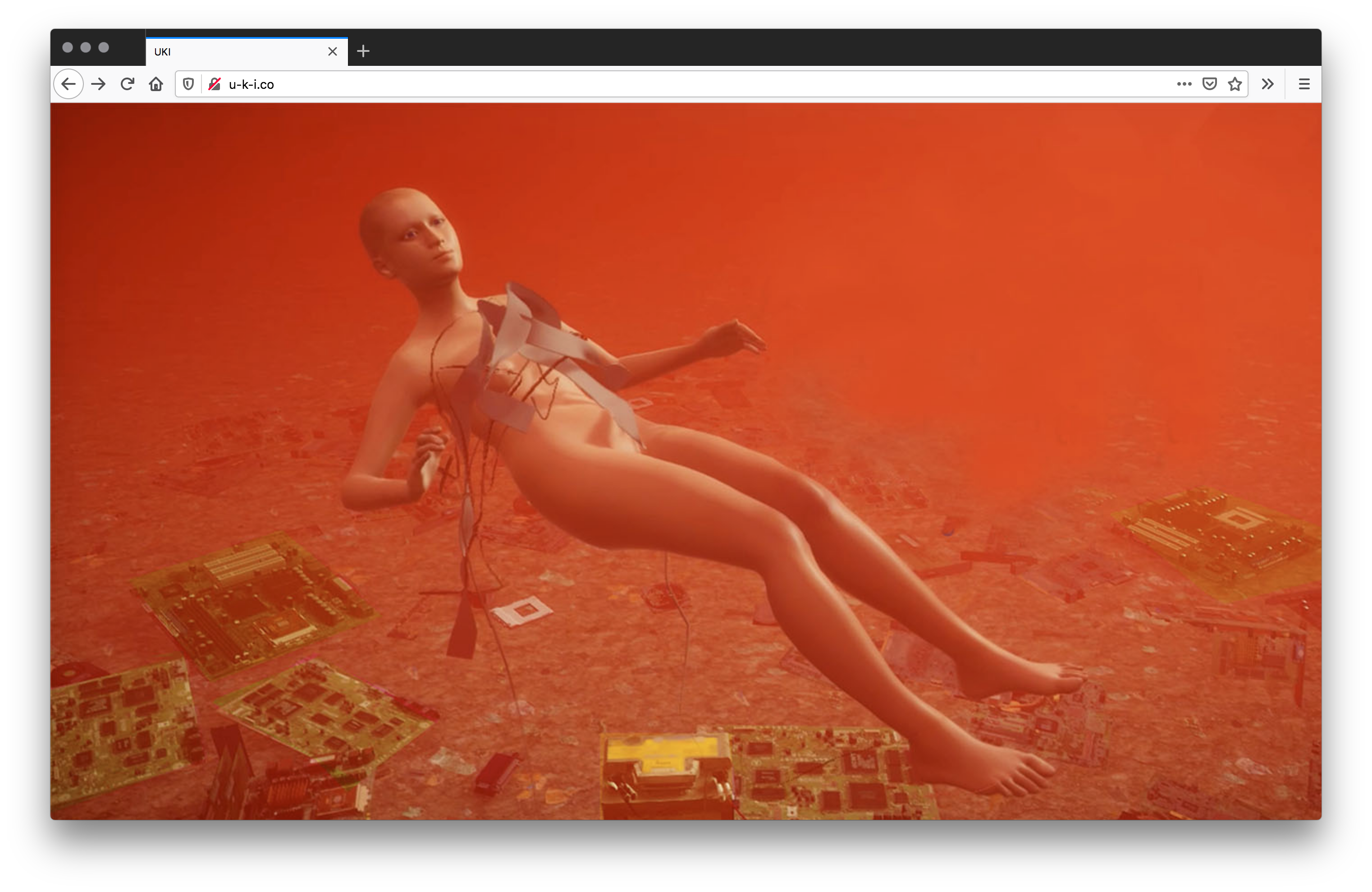
Screenshot, 2020, Firefox v76.0.1 on Mac OS 10.13.3; http://u-k-i.co/

Screenshot, 2020, Firefox v76.0.1 on Mac OS 10.13.3; http://u-k-i.co/html/intro.html
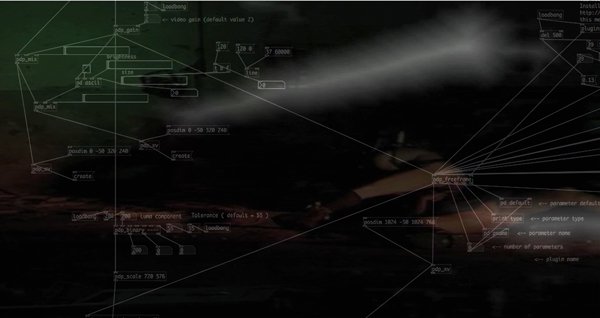
2009, image from http://u-k-i.co/UKI2009-2016/performance/html/concept.html

2009, “3D animation [Jaume] — red blood cells on the move”, image from http://u-k-i.co/UKI2009-2016/game/html/gamescenario.html
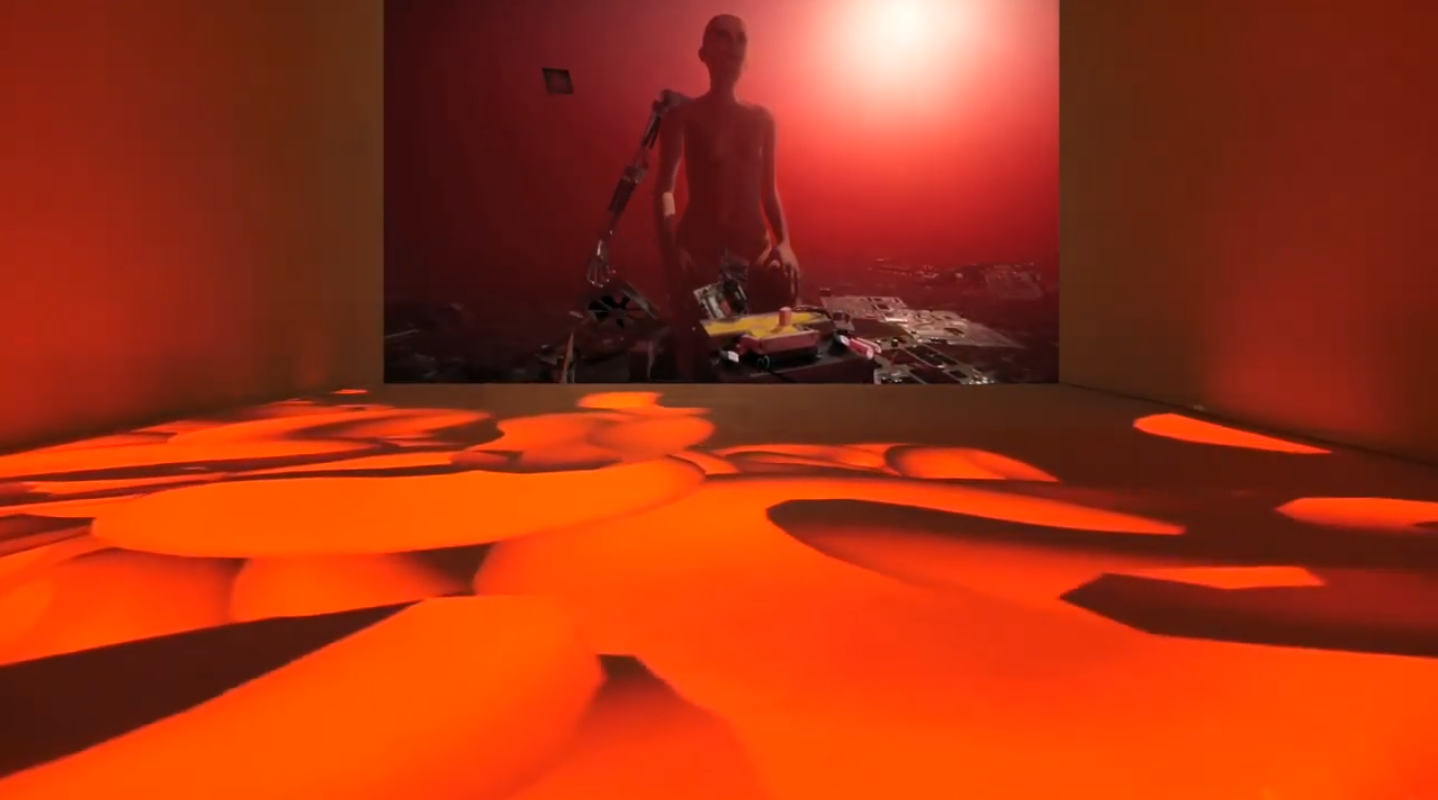
“UKI, Virus Rising, a 3 channel installation at Gwangju Biennale 2018”, video still 08:20, https://www.youtube.com/watch?v=oEo5hAVK6G4&feature=youtu.be
UKI is conceived as a sequel to my scifi cyberpunk film I.K.U. which tells the story of IKU (orgasm in Japanese) coders, dispatched by the internet porn enterprise GENOM Corp., and made into sex machines to collect human orgasm data. These programmed humanoids’ accumulated hard drive data are ultimately downloaded by IKU runners (á la Blade Runner) and made into color-coded orgasm chips for mobile phone plug in and consumption. In post-netcrash UKI, the data deprived IKU coders are dumped as pieces of e-trash amidst the discarded electronic parts and bits while GENOM Corp. takes human body hostage to initiate BioNet, a network made up of micro-computing red blood cells (erythrocytes). Inhabiting on the electronic trash-scape with the last remaining coders, hackers, and netters who work to patch self-sustainable networks, IKU coders unpack their body parts, rewrite the codes to reboot themselves. Trading sex for codes, code sexes code, the defunct IKU coders infected with body/software virus emerge amidst noise blast to declare themselves UKI the virus. Meanwhile, GENOM Corp.’s BioNet aims to re-program human orgasm into “self-sustained pleasure,” a profitable bio-scheme conspired without any precaution for damaging the biosphere. UKI the virus—propagated—transmits, infects and mobilizes the citizens to enter the occupied human body—to infiltrate BioNet, to sabotage the ORGANISMO production and finally to reclaim lost orgasm data.
2009, Shu Lea Cheang, http://u-k-i.co/; excerpt from Shu Lea Cheang, interview by Victoria Sin, “Shu Lea Cheang in conversation with Victoria Sin,” (486) Auto Italia South East, http://autoitaliasoutheast.org/news/shu-lea-cheang-in-conversation-with-victoria-sin/#_ftnref1
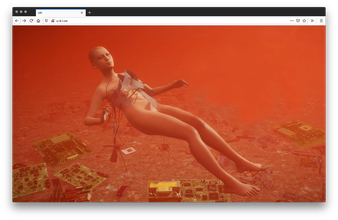
Screenshot, 2020, Firefox v76.0.1 on Mac OS 10.13.3; http://u-k-i.co/

Screenshot, 2020, Firefox v76.0.1 on Mac OS 10.13.3; http://u-k-i.co/html/intro.html
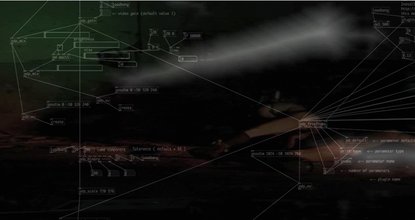
2009, image from http://u-k-i.co/UKI2009-2016/performance/html/concept.html

2009, “3D animation [Jaume] — red blood cells on the move”, image from http://u-k-i.co/UKI2009-2016/game/html/gamescenario.html

“UKI, Virus Rising, a 3 channel installation at Gwangju Biennale 2018”, video still 08:20, https://www.youtube.com/watch?v=oEo5hAVK6G4&feature=youtu.be
(352)
2010
Unmasking the Theatre of Technoscience: The Cyberfeminist Performances of subRosa
Federica Timeto
Performativity is of the utmost importance in recent cyberfeminist practices that “embody feminist content, practices, and agency within the electronic technologies, virtual systems, and Real Life spaces, which we inhabit in our work and lives.” subRosa is a cyberfeminist collective based in the United States whose activity dates back to the late 1990s—it is no coincidence that it initially emerged as a study group around Wilding, one of the founders of the first Feminist Art Program at CalArts and a leading artist of the Womanhouse (1972) project. The collective creates performative environments that enhance participants’ understanding of the politics and effects of new technologies on our lives, while at the same time providing them with tactical means of resistance. subRosa’s “site-u-ational” approach—which finds analogies in the modes and scope of the “recombinant theater” of the Critical Art Ensemble—aims at involving the audience in a public debate on such themes so as to counter the “private theater” of technoscience: in subRosa’s works, knowledge is a common experience, not private property; it cannot be bought or possessed, but can only be acquired and disseminated through a practice of sharing.
2010, Federica Timeto, Kumarini Silva, Kaitlynn Mendes, Kate Mondloch, Jenny Gunnarsson Payne, Alessandra Marino, and Federica Timeto, “Commentary and Criticism,” Feminist Media Studies 10, no. 2 (2010): pp. 229–248; excerpt p. 245
https://www.academia.edu/269238/Unmasking_the_Theatre_of_Technoscience_The_cyberfeminist_performances_of_subRosa https://www.are.na/block/7922021
Performativity is of the utmost importance in recent cyberfeminist practices that “embody feminist content, practices, and agency within the electronic technologies, virtual systems, and Real Life spaces, which we inhabit in our work and lives.” subRosa is a cyberfeminist collective based in the United States whose activity dates back to the late 1990s—it is no coincidence that it initially emerged as a study group around Wilding, one of the founders of the first Feminist Art Program at CalArts and a leading artist of the Womanhouse (1972) project. The collective creates performative environments that enhance participants’ understanding of the politics and effects of new technologies on our lives, while at the same time providing them with tactical means of resistance. subRosa’s “site-u-ational” approach—which finds analogies in the modes and scope of the “recombinant theater” of the Critical Art Ensemble—aims at involving the audience in a public debate on such themes so as to counter the “private theater” of technoscience: in subRosa’s works, knowledge is a common experience, not private property; it cannot be bought or possessed, but can only be acquired and disseminated through a practice of sharing.
2010, Federica Timeto, Kumarini Silva, Kaitlynn Mendes, Kate Mondloch, Jenny Gunnarsson Payne, Alessandra Marino, and Federica Timeto, “Commentary and Criticism,” Feminist Media Studies 10, no. 2 (2010): pp. 229–248; excerpt p. 245
https://www.academia.edu/269238/Unmasking_the_Theatre_of_Technoscience_The_cyberfeminist_performances_of_subRosa https://www.are.na/block/7922021
(353)
2010
Feminist Technology
Linda L. Layne, Sharra L. Vostral, Kate Boye
“Feminist technology”—what a power and provocative concept; both immediately comprehensible and puzzling, simple on the face of it, yet complex. […] The earliest use of “feminist technolgoy” I have found is in a 1983 essay by Corlann Gee Bush. She does not define the term, which appears in her final sentence, but simply asserts that “A feminist technology should, indeed, be something else again.” […] The term “feminist technology” did not catch on though, and explanation for this might be found in the linked history of the term “feminist,” which has had a spotty presence in what is commonly, and tellingly, known as “gender and technology studies.” […] Once we agreed to make “feminist technolgies” a goal, we started with a series of definitional questions: Do any exist? If so, what makes a technology feminist? What criteria must a feminist technology fulfill?
2010, Linda L. Layne, Sharra L. Vostral, and Kate Boyer (Champaign, IL: University of Illinois Press, 2010); excerpt from Linda L. Layne, introduction to Layne et al., Feminist Technology, p. 1
Contributors include Jennifer Aengst, Maia Boswell-Penc, Kate Boyer, Frances Bronet, Shirley Gorenstein, Anita Hardon, Deborah G. Johnson, Linda L. Layne, Deana McDonagh, and Sharra L. Vostral.
https://www.press.uillinois.edu/books/catalog/53phf3qw9780252035326.html
“Feminist technology”—what a power and provocative concept; both immediately comprehensible and puzzling, simple on the face of it, yet complex. […] The earliest use of “feminist technolgoy” I have found is in a 1983 essay by Corlann Gee Bush. She does not define the term, which appears in her final sentence, but simply asserts that “A feminist technology should, indeed, be something else again.” […] The term “feminist technology” did not catch on though, and explanation for this might be found in the linked history of the term “feminist,” which has had a spotty presence in what is commonly, and tellingly, known as “gender and technology studies.” […] Once we agreed to make “feminist technolgies” a goal, we started with a series of definitional questions: Do any exist? If so, what makes a technology feminist? What criteria must a feminist technology fulfill?
2010, Linda L. Layne, Sharra L. Vostral, and Kate Boyer (Champaign, IL: University of Illinois Press, 2010); excerpt from Linda L. Layne, introduction to Layne et al., Feminist Technology, p. 1
Contributors include Jennifer Aengst, Maia Boswell-Penc, Kate Boyer, Frances Bronet, Shirley Gorenstein, Anita Hardon, Deborah G. Johnson, Linda L. Layne, Deana McDonagh, and Sharra L. Vostral.
https://www.press.uillinois.edu/books/catalog/53phf3qw9780252035326.html
(354)
2010
Hypertext and the Female Imaginary
Jaishree K. Odin
In Hypertext and the Female Imaginary, Jaishree K. Odin reveals how media that use hypertextual strategies of narrative fragmentation provocatively engage questions of gender or cultural difference. Odin addresses hypertext on two levels: as an artistic technique in electronic or film narratives and as a metaphor for describing the complexity of postmodernism in which different cultures, discourses, and media are in continual interaction with one another.
Investigating the work of Trinh T. Minh-ha, Judy Malloy, Shelley Jackson, Stephanie Strickland, and M. D. Coverly, Odin demonstrates how these writers apply hypertextual strategies to subversively convey difference. Through her readings of various transformative hypertext narratives by women writers/artists, she pursues the question of what constitutes empowering descriptions of the world in a technology-mediated culture where the dominant discourse is turning everything into the same.
2010, Jaishree K. Odin (Minneapolis, MN: University of Minnesota Press, 2010); excerpt from the University of Minnesota Press
https://www.upress.umn.edu/book-division/books/hypertext-and-the-female-imaginary?searchterm=Odin
In Hypertext and the Female Imaginary, Jaishree K. Odin reveals how media that use hypertextual strategies of narrative fragmentation provocatively engage questions of gender or cultural difference. Odin addresses hypertext on two levels: as an artistic technique in electronic or film narratives and as a metaphor for describing the complexity of postmodernism in which different cultures, discourses, and media are in continual interaction with one another.
Investigating the work of Trinh T. Minh-ha, Judy Malloy, Shelley Jackson, Stephanie Strickland, and M. D. Coverly, Odin demonstrates how these writers apply hypertextual strategies to subversively convey difference. Through her readings of various transformative hypertext narratives by women writers/artists, she pursues the question of what constitutes empowering descriptions of the world in a technology-mediated culture where the dominant discourse is turning everything into the same.
2010, Jaishree K. Odin (Minneapolis, MN: University of Minnesota Press, 2010); excerpt from the University of Minnesota Press
https://www.upress.umn.edu/book-division/books/hypertext-and-the-female-imaginary?searchterm=Odin
(355)
2010
Cultural Appropriations of Technical Capital: Black Women, Weblogs, and the Digital Divide
André Brock, Lynette Kvasny, Kayla Hales
Research on the social implications of information and communication technology (ICT) use by underserved populations is typically framed as a “digital divide.” Conversations about bridging this said divide consistently link underserved groups with deficit models of attainment. Either minority groups lack material access, lack mastery of digital practices and literacies, or lack value systems promoting the educational achievement necessary to acquire base proficiency in digital systems.
These three premises illustrate the rhetorical power of Western ideologies of technology use and race. Technology becomes the hallmark of civilization, the arbiter of logic and reason, and the civilized are considered to have a “natural affinity” for technology. Those on the margins are demeaned for their lack of technology engagement on material, cognitive, and ideological, or even moral grounds.Thus, instrumental rationality becomes inextricably intertwined with technical capital and cultural capital, and the underserved are considered “irrational.”
2010, André Brock, Lynette Kvasny, and Kayla Hales, Information, Communication & Society 13, no. 7 (October 2010): pp. 1040–1059; excerpt p.1040–1041
https://arena-attachments.s3.amazonaws.com/3130860/cac07d84793d662025b12fe7c6fdc3a1.pdf?1543698213
Research on the social implications of information and communication technology (ICT) use by underserved populations is typically framed as a “digital divide.” Conversations about bridging this said divide consistently link underserved groups with deficit models of attainment. Either minority groups lack material access, lack mastery of digital practices and literacies, or lack value systems promoting the educational achievement necessary to acquire base proficiency in digital systems.
These three premises illustrate the rhetorical power of Western ideologies of technology use and race. Technology becomes the hallmark of civilization, the arbiter of logic and reason, and the civilized are considered to have a “natural affinity” for technology. Those on the margins are demeaned for their lack of technology engagement on material, cognitive, and ideological, or even moral grounds.Thus, instrumental rationality becomes inextricably intertwined with technical capital and cultural capital, and the underserved are considered “irrational.”
2010, André Brock, Lynette Kvasny, and Kayla Hales, Information, Communication & Society 13, no. 7 (October 2010): pp. 1040–1059; excerpt p.1040–1041
https://arena-attachments.s3.amazonaws.com/3130860/cac07d84793d662025b12fe7c6fdc3a1.pdf?1543698213
(356)
2010
From Cybernation to Feminization: Firestone and Cyberfeminism
Susanna Paasonen
[Shulamith] Firestone saw technology as progressive and liberating unless improperly used, yet misleading inasmuch as hers was certainly a claim for feminist agency, social change, and political struggle. Her faith in the transformative potential of technology was conditional and based on women’s ability to gain control over it. In contrast, Sadie Plant has argued for the impossibility of female agency and seen the process of feminization as both automatic and spontaneous. Plant’s theory of feminization assumes an intimate affinity between women and increasingly complex technology, both of which have been instruments and tools for (male-dominated) culture. However, women and machines are growing out of control: “tools mutate into complex machines which began to learn and act for themselves […] As media, tools and goods mutate, so the women begin to change, escaping their isolation and becoming increasingly interlinked.” For Plant, feminization is a process parallel to the history of women’s liberation, but one foreclosing intentional agency: “Cybernetics is feminisation. When intelligent space emerges alongside the history of women’s liberation, no one is responsible. That’s the point, the fold in the map, where architects get lost in the pattern. Self-guiding systems were not in the plan.”
2010, Susanna Paasonen, in Further Adventures of The Dialectic of Sex: Critical Essays on Shulamith Firestone, eds. Mandy Merck and Stella Sandford (New York: Palgrave Macmillan, 2010), pp. 61–83; excerpt p. 69
[Shulamith] Firestone saw technology as progressive and liberating unless improperly used, yet misleading inasmuch as hers was certainly a claim for feminist agency, social change, and political struggle. Her faith in the transformative potential of technology was conditional and based on women’s ability to gain control over it. In contrast, Sadie Plant has argued for the impossibility of female agency and seen the process of feminization as both automatic and spontaneous. Plant’s theory of feminization assumes an intimate affinity between women and increasingly complex technology, both of which have been instruments and tools for (male-dominated) culture. However, women and machines are growing out of control: “tools mutate into complex machines which began to learn and act for themselves […] As media, tools and goods mutate, so the women begin to change, escaping their isolation and becoming increasingly interlinked.” For Plant, feminization is a process parallel to the history of women’s liberation, but one foreclosing intentional agency: “Cybernetics is feminisation. When intelligent space emerges alongside the history of women’s liberation, no one is responsible. That’s the point, the fold in the map, where architects get lost in the pattern. Self-guiding systems were not in the plan.”
2010, Susanna Paasonen, in Further Adventures of The Dialectic of Sex: Critical Essays on Shulamith Firestone, eds. Mandy Merck and Stella Sandford (New York: Palgrave Macmillan, 2010), pp. 61–83; excerpt p. 69
(357)
2010
Developing a Corporeal Cyberfeminism: Beyond Cyberutopia
Jessica E. Brophy
“This article discusses — and rejects — cyberutopia, an idealized theory of internet use that requires users to leave their bodies behind when online. The author instead calls for a cyberfeminist perspective in relation to studying the internet and other new media, centrally locating corporeality and embodiment. The underutilized concept of intra-agency is then employed to develop liminality in relation to the experience of going online. The author then outlines different versions of cyberfeminism and endorses that which addresses the relationships between the lived experiences of users and the technology itself. The article concludes with a call for theorists to expand and enrich the concepts used to study new media.” —Jessica E. Brophy, abstract
Sage Journals, Vol 12, Issue 6, 2010
https://doi.org/10.1177/1461444809350901
“This article discusses — and rejects — cyberutopia, an idealized theory of internet use that requires users to leave their bodies behind when online. The author instead calls for a cyberfeminist perspective in relation to studying the internet and other new media, centrally locating corporeality and embodiment. The underutilized concept of intra-agency is then employed to develop liminality in relation to the experience of going online. The author then outlines different versions of cyberfeminism and endorses that which addresses the relationships between the lived experiences of users and the technology itself. The article concludes with a call for theorists to expand and enrich the concepts used to study new media.” —Jessica E. Brophy, abstract
Sage Journals, Vol 12, Issue 6, 2010
https://doi.org/10.1177/1461444809350901
(358)
2010
Glitch Studies Manifesto
Rosa Menkman
Use the glitch as an exoskeleton of progress. The glitch is a wonderful experience of an interruption that shifts an object away from its ordinary form and discourse. For a moment I am shocked, lost and in awe, asking myself what this other utterance is, how was it created. Is it perhaps … a glitch? But once I named it, the momentum—the glitch—is no more … […]
The glitch has no solid form or state through time; it is often perceived as an unexpected and abnormal mode of operandi, a break from (one of) the many flows (of expectations) within a technological system. But as the understanding of a glitch changes when it is being named, so does the equilibrium of the (former) glitch itself: the original experience of a rupture moved passed its momentum and vanished into a realm of new conditions. The glitch is a new and ephemeral, personal experience.
2010, Rosa Menkman, https://amodern.net/wp-content/uploads/2016/05/2010_Original_Rosa-Menkman-Glitch-Studies-Manifesto.pdf
https://www.are.na/block/7751270
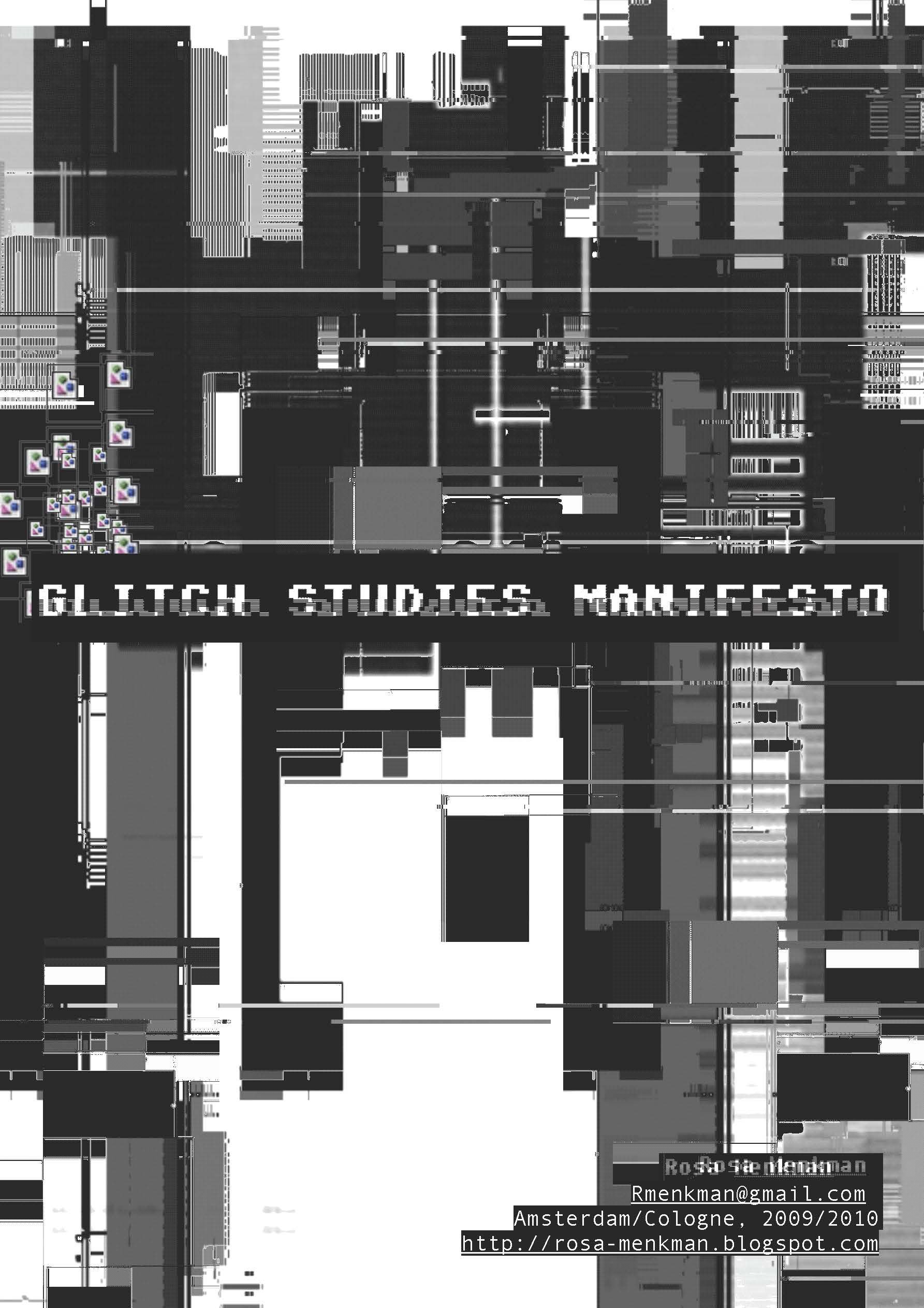
Glitch Studies Manifesto cover image
Use the glitch as an exoskeleton of progress. The glitch is a wonderful experience of an interruption that shifts an object away from its ordinary form and discourse. For a moment I am shocked, lost and in awe, asking myself what this other utterance is, how was it created. Is it perhaps … a glitch? But once I named it, the momentum—the glitch—is no more … […]
The glitch has no solid form or state through time; it is often perceived as an unexpected and abnormal mode of operandi, a break from (one of) the many flows (of expectations) within a technological system. But as the understanding of a glitch changes when it is being named, so does the equilibrium of the (former) glitch itself: the original experience of a rupture moved passed its momentum and vanished into a realm of new conditions. The glitch is a new and ephemeral, personal experience.
2010, Rosa Menkman, https://amodern.net/wp-content/uploads/2016/05/2010_Original_Rosa-Menkman-Glitch-Studies-Manifesto.pdf
https://www.are.na/block/7751270

Glitch Studies Manifesto cover image
(359)
2010
Geek Girls LatAm
Joanna Prieto, Diana Salazar
Las mujeres Geek Girls LatAm, somos hacedoras de cambios sociales, culturales, económicos y aportamos al desarrollo de latinoamérica con ciencia y tecnología. Es un honor para nosotras ser parte de este movimiento que promueve la diversidad, inclusión y equidad en la Economía Digital. Aportamos nuestro tiempo, talento y posibilidades para hacer que este sea un mundo mejor. Tenemos el corazón lleno de alegría por compartir, la mente curiosa de conocimiento en áreas STEAM, de ciencia y tecnología, y el alma dispuesta a ser transformada a través de una vida puesta al servicio de los demás.
Geek Girls LatAm women are the makers of social, cultural, and economic changes and we contribute to the development of Latin America with science and technology. It is an honor for us to be part of this movement that promotes diversity, inclusion and equity in the Digital Economy. We contribute our time, talent and possibilities to make this a better world. We have a heart full of joy to share, a mind curious about knowledge in STEAM areas, science and technology, and a soul ready to be transformed through a life put at the service of others.
2010, Joanna Prieto and Diana Salazar, http://geekgirlslatam.org/
Colombia
Las mujeres Geek Girls LatAm, somos hacedoras de cambios sociales, culturales, económicos y aportamos al desarrollo de latinoamérica con ciencia y tecnología. Es un honor para nosotras ser parte de este movimiento que promueve la diversidad, inclusión y equidad en la Economía Digital. Aportamos nuestro tiempo, talento y posibilidades para hacer que este sea un mundo mejor. Tenemos el corazón lleno de alegría por compartir, la mente curiosa de conocimiento en áreas STEAM, de ciencia y tecnología, y el alma dispuesta a ser transformada a través de una vida puesta al servicio de los demás.
Geek Girls LatAm women are the makers of social, cultural, and economic changes and we contribute to the development of Latin America with science and technology. It is an honor for us to be part of this movement that promotes diversity, inclusion and equity in the Digital Economy. We contribute our time, talent and possibilities to make this a better world. We have a heart full of joy to share, a mind curious about knowledge in STEAM areas, science and technology, and a soul ready to be transformed through a life put at the service of others.
2010, Joanna Prieto and Diana Salazar, http://geekgirlslatam.org/
Colombia
(360)
2010
Trans Desire/Affective Cyborgs
Micha Cárdenas, Barbara Fornssler
There is a need for a re-invention of feminist blasphemy that can be achieved by “going-through” the cyborg body and by suspending some of the tenets that have classically been part of the constitution of feminist thought. Notably, what I termed the “breakdown-of-binary project” in order to explore the dialectic of the cyborg figure. […] Although the cyborg figure is deemed to be a hybrid, the term “cyborg” dangerously relocates this figure into an identity of “singularity.” […] The relational process of technology, inherently libratory and oppressive, is discussed via concepts of origin and the idea of “embodied choices.” […] Switch is the becoming cyborg dependent on the contextual conditions of emergence. […] This emergence of switch is a process-state only readable in reflection. Switch holds at the core of coming-to-be an agency that is enacted via the “how” or put differently, our approach to technology, to our becoming as cyborgs. In this mode of becoming our agency is switch. We are switch.
2010, Micha Cárdenas and Barbara Fornssler (New York: Atropos, 2010); excerpt from Barbara Fornssler, “Conclusions, From the Individual Body to an Erotics of the Social,” in Cárdenas and Fornssler, Trans Desire, p. 74–75
https://www.atropospress.com/trans-desireaffective-cyborgs
There is a need for a re-invention of feminist blasphemy that can be achieved by “going-through” the cyborg body and by suspending some of the tenets that have classically been part of the constitution of feminist thought. Notably, what I termed the “breakdown-of-binary project” in order to explore the dialectic of the cyborg figure. […] Although the cyborg figure is deemed to be a hybrid, the term “cyborg” dangerously relocates this figure into an identity of “singularity.” […] The relational process of technology, inherently libratory and oppressive, is discussed via concepts of origin and the idea of “embodied choices.” […] Switch is the becoming cyborg dependent on the contextual conditions of emergence. […] This emergence of switch is a process-state only readable in reflection. Switch holds at the core of coming-to-be an agency that is enacted via the “how” or put differently, our approach to technology, to our becoming as cyborgs. In this mode of becoming our agency is switch. We are switch.
2010, Micha Cárdenas and Barbara Fornssler (New York: Atropos, 2010); excerpt from Barbara Fornssler, “Conclusions, From the Individual Body to an Erotics of the Social,” in Cárdenas and Fornssler, Trans Desire, p. 74–75
https://www.atropospress.com/trans-desireaffective-cyborgs
(361)
2010
Singing at the Digital Well: Blogs as Cyberfeminist Sites of Resistance
Tess Pierce
Physical barriers, political upheaval, and gendered discriminatory practices all contribute to shaky foundations for collective identity. This article focuses on one Iraqi woman’s life within value systems that privilege males, and discusses how she subverts, resists, and supports the male value systems while negotiating the influences of war, Western culture, and her life in a tightly controlled Islamic environment. I argue that “Riverbend” (a pseudonym), in her blog, Baghdad Burning, is singing songs of resistance at a digital well using a virtual veil in order to subvert the rigid laws of sexual seclusion that the current war generates. In this digital environment, Riverbend relies on her familiar cultural traditions (influenced by Islam) to create new strategies of resistance and to connect with other women as a cyberconduit. Relying on [Rosi] Braidotti’s (1994) concept of the nomadic subject and rhizome theory, I discuss the ways Riverbend uses her blog as the new meeting place, or well, using the soulful musical poetry of the Iraqi sihr halal—“lawful magic”—in themes that center around her private life, addressed to a public audience, with women guarding the information, passing on culture, and creating a new version of the magical words.
2010, Tess Pierce, in “Women in the Middle East,” eds. Nawal Ammar, Aylin Akpmar, and Salam Hamdan, special issue, Feminist Formations 22, no. 3 (Fall 2010): pp. 196–209; excerpt pp. 196–197
https://www.jstor.org/stable/40980990?seq=1 https://www.are.na/block/7977392
Physical barriers, political upheaval, and gendered discriminatory practices all contribute to shaky foundations for collective identity. This article focuses on one Iraqi woman’s life within value systems that privilege males, and discusses how she subverts, resists, and supports the male value systems while negotiating the influences of war, Western culture, and her life in a tightly controlled Islamic environment. I argue that “Riverbend” (a pseudonym), in her blog, Baghdad Burning, is singing songs of resistance at a digital well using a virtual veil in order to subvert the rigid laws of sexual seclusion that the current war generates. In this digital environment, Riverbend relies on her familiar cultural traditions (influenced by Islam) to create new strategies of resistance and to connect with other women as a cyberconduit. Relying on [Rosi] Braidotti’s (1994) concept of the nomadic subject and rhizome theory, I discuss the ways Riverbend uses her blog as the new meeting place, or well, using the soulful musical poetry of the Iraqi sihr halal—“lawful magic”—in themes that center around her private life, addressed to a public audience, with women guarding the information, passing on culture, and creating a new version of the magical words.
2010, Tess Pierce, in “Women in the Middle East,” eds. Nawal Ammar, Aylin Akpmar, and Salam Hamdan, special issue, Feminist Formations 22, no. 3 (Fall 2010): pp. 196–209; excerpt pp. 196–197
https://www.jstor.org/stable/40980990?seq=1 https://www.are.na/block/7977392
(362)
2010
Is the Internet Colorblind?
Courtney Marshall
When we’re online, we don’t see color, gender, sexuality, or other identities. The Internet is the ultimate colorblind society. Why then, should Essex Hemphill be worried about not being accepted? Why does he worry that his invisibility in American culture will be extended into cyberculture? These questions speak to the problem of theorizing cyberspace as a raceless, genderless utopia.
Critical race and feminist theorists have argued that the desire for a colorblind society, one in which we don’t see color, is racialized. […] A desire to escape race by taking refuge online, then, is a misguided endeavor. Having a space where you can represent yourself as not dark, female, or Catholic does not make these categories less real. In fact, having the desire to leave these behind shows the power that they have in our culture. We can’t not see them; we can’t see beyond them. In reality, we do not leave our bodies behind when we engage in discussions of race online, and we should question our desire to label our identity categories as problems.
2010, Courtney Marshall, The University Dialogue 60 (2010), https://scholars.unh.edu/discovery_ud/60
https://www.are.na/block/7977740
When we’re online, we don’t see color, gender, sexuality, or other identities. The Internet is the ultimate colorblind society. Why then, should Essex Hemphill be worried about not being accepted? Why does he worry that his invisibility in American culture will be extended into cyberculture? These questions speak to the problem of theorizing cyberspace as a raceless, genderless utopia.
Critical race and feminist theorists have argued that the desire for a colorblind society, one in which we don’t see color, is racialized. […] A desire to escape race by taking refuge online, then, is a misguided endeavor. Having a space where you can represent yourself as not dark, female, or Catholic does not make these categories less real. In fact, having the desire to leave these behind shows the power that they have in our culture. We can’t not see them; we can’t see beyond them. In reality, we do not leave our bodies behind when we engage in discussions of race online, and we should question our desire to label our identity categories as problems.
2010, Courtney Marshall, The University Dialogue 60 (2010), https://scholars.unh.edu/discovery_ud/60
https://www.are.na/block/7977740
(363)
2010
AkiraChix
Linda Kamau, Marie Githinji
AkiraChix was founded in 2010 by a group of women who were passionate about changing the landscape of the technology field and creating a community that supports, connects and inspires women in the tech space. These young women challenged the status quo by encouraging and facilitating more women to take up careers in technology-related fields. Its vision has continued to be led by Linda Kamau and Marie Githinji, who have committed to champion the diversity and inclusion of women in the technical workforce, changing the economic capabilities of young women as well as shifting societal norms. AkiraChix has come a long way from its beginnings, where we trained young women from Nairobi in a bus fitted with computers, to a fully-fledged residential campus with a goal of serving young women from all over Kenya and other African Countries.
2010, Linda Kamau and Marie Githinji, https://akirachix.com/
Nairobi, Kenya, Africa
AkiraChix was founded in 2010 by a group of women who were passionate about changing the landscape of the technology field and creating a community that supports, connects and inspires women in the tech space. These young women challenged the status quo by encouraging and facilitating more women to take up careers in technology-related fields. Its vision has continued to be led by Linda Kamau and Marie Githinji, who have committed to champion the diversity and inclusion of women in the technical workforce, changing the economic capabilities of young women as well as shifting societal norms. AkiraChix has come a long way from its beginnings, where we trained young women from Nairobi in a bus fitted with computers, to a fully-fledged residential campus with a goal of serving young women from all over Kenya and other African Countries.
2010, Linda Kamau and Marie Githinji, https://akirachix.com/
Nairobi, Kenya, Africa
(364)
2010
Pink Noises
Tara Rodgers (Analog Tara)
Pink Noises is a feminist media project that promotes work by women who are DJs, electronic musicians and sound artists, makes information on music production more accessible, and encourages critical consciousness through creative and exploratory uses of sound and audio technologies. The title embraces “pink” for its gendered connotations, “noise” as a metaphor for disturbance, and “pink noise” as an audio-technical term describing equal distributions of power across the frequency spectrum.
The website Pinknoises.com was founded in 2000 by musician and writer Tara Rodgers (Analog Tara), and was one of the first online communities devoted to women who make and perform electronic music. The site was formed out of a do-it-yourself ethos: inspired by the legacy of Riot Grrrl, which catalyzed feminist art making and activism in the early ‘90s, and by the utopic spirit at that time for creating online communities that could transcend geographic boundaries. Pinknoises.com was widely praised in the press for making technical information about audio production more accessible.
2010, Tara Rodgers (Analog Tara), https://www.analogtara.net/wp/projects/pink-noises/; submitted by Annie Goh
Pink Noises is a feminist media project that promotes work by women who are DJs, electronic musicians and sound artists, makes information on music production more accessible, and encourages critical consciousness through creative and exploratory uses of sound and audio technologies. The title embraces “pink” for its gendered connotations, “noise” as a metaphor for disturbance, and “pink noise” as an audio-technical term describing equal distributions of power across the frequency spectrum.
The website Pinknoises.com was founded in 2000 by musician and writer Tara Rodgers (Analog Tara), and was one of the first online communities devoted to women who make and perform electronic music. The site was formed out of a do-it-yourself ethos: inspired by the legacy of Riot Grrrl, which catalyzed feminist art making and activism in the early ‘90s, and by the utopic spirit at that time for creating online communities that could transcend geographic boundaries. Pinknoises.com was widely praised in the press for making technical information about audio production more accessible.
2010, Tara Rodgers (Analog Tara), https://www.analogtara.net/wp/projects/pink-noises/; submitted by Annie Goh
(365)
2011
Gender and Media Reader
Mary Celeste Kearney
“The Gender and Media Reader is an essential text for those interested in gender and media studies, its main topics, debates, and theoretical approaches. The primary objective of this collection is to expand readers’ knowledge of how gender operates within media culture through engagement with foundational writings as well as more contemporary research in this field. Taking a multiperspectival approach that considers gender broadly and examines media texts alongside their production and consumption, The Gender and Media Reader enables readers’ critical thinking about how gender is constructed, contested, and subverted in different sites within media culture. Along with the main introduction, individual section introductions facilitate readers’ understanding of the development of gender and media studies by contextualizing the various topics, debates, and theoretical approaches that have shaped it, as well as by highlighting current trends.” —Summary by the publisher Routledge
https://www.routledge.com/The-Gender-and-Media-Reader-1st-Edition/Kearney/p/book/9780415993463
“The Gender and Media Reader is an essential text for those interested in gender and media studies, its main topics, debates, and theoretical approaches. The primary objective of this collection is to expand readers’ knowledge of how gender operates within media culture through engagement with foundational writings as well as more contemporary research in this field. Taking a multiperspectival approach that considers gender broadly and examines media texts alongside their production and consumption, The Gender and Media Reader enables readers’ critical thinking about how gender is constructed, contested, and subverted in different sites within media culture. Along with the main introduction, individual section introductions facilitate readers’ understanding of the development of gender and media studies by contextualizing the various topics, debates, and theoretical approaches that have shaped it, as well as by highlighting current trends.” —Summary by the publisher Routledge
https://www.routledge.com/The-Gender-and-Media-Reader-1st-Edition/Kearney/p/book/9780415993463
(366)
2011
Revisiting Cyberfeminism
Susanna Paasonen
In the early 1990s, cyberfeminism surfaced as an arena for critical analyses of the inter-connections of gender and new technology especially so in the context of the internet, which was then emerging as something of a “mass-medium.” Scholars, activists and artists interested in media technology and its gendered underpinnings formed networks and groups. Consequently, they attached altering sets of meaning to the term cyberfeminism that ranged in their take on, and identifications with feminism. Cyberfeminist activities began to fade in the early 2000s and the term has since been used by some as synonymous with feminist studies of new media yet much is also lost in such a conflation. This article investigates the histories of cyberfeminism from two interconnecting perspectives. First, it addresses the meanings of the prefix “cyber” in cyberfeminism. Second, it asks what kinds of critical and analytical positions cyberfeminist networks, events, projects and publications have entailed. Through these two perspectives, the article addresses the appeal and attraction of cyberfeminism and poses some tentative explanations for its appeal fading and for cyberfeminist activities being channeled into other networks and practiced under different names.
2011, Susanna Paasonen, in “Revisiting Media Technologies,” eds. Caroline Bassett, Maren Hartmann, and Kate O’Riordan, special issue, Communications 36, no. 3 (2011): pp. 335–352; excerpt from abstract
https://www.are.na/block/7751376
In the early 1990s, cyberfeminism surfaced as an arena for critical analyses of the inter-connections of gender and new technology especially so in the context of the internet, which was then emerging as something of a “mass-medium.” Scholars, activists and artists interested in media technology and its gendered underpinnings formed networks and groups. Consequently, they attached altering sets of meaning to the term cyberfeminism that ranged in their take on, and identifications with feminism. Cyberfeminist activities began to fade in the early 2000s and the term has since been used by some as synonymous with feminist studies of new media yet much is also lost in such a conflation. This article investigates the histories of cyberfeminism from two interconnecting perspectives. First, it addresses the meanings of the prefix “cyber” in cyberfeminism. Second, it asks what kinds of critical and analytical positions cyberfeminist networks, events, projects and publications have entailed. Through these two perspectives, the article addresses the appeal and attraction of cyberfeminism and poses some tentative explanations for its appeal fading and for cyberfeminist activities being channeled into other networks and practiced under different names.
2011, Susanna Paasonen, in “Revisiting Media Technologies,” eds. Caroline Bassett, Maren Hartmann, and Kate O’Riordan, special issue, Communications 36, no. 3 (2011): pp. 335–352; excerpt from abstract
https://www.are.na/block/7751376
(367)
2011
Wikid GRRLS
Stine Eckert
We all know and remember that when learning seems fun we learn better, and the learning sticks. The goal of Wikid GRRLS is to encourage and help middle school aged girls to think of themselves as tech-savvy and smart, and to give them the confidence and skills to contribute to online knowledge projects. We advance this goal by teaching teenage girls a variety of online skills, including how to run and contribute to a Wiki-based knowledge website (such as Wikipedia). We emphasize learning skills that are engaging (that the girls see as fun) and have wide applicability, across their school curriculum and beyond. These skills involve technical mastery (how to navigate a wiki, incorporate video, design, smart searches with Google), interpersonal/social relationships (team work, collaboration, moderating, editing), and general learning (writing and especially research).
2011, Stine Eckert, https://wikidgrrls.wordpress.com/
We all know and remember that when learning seems fun we learn better, and the learning sticks. The goal of Wikid GRRLS is to encourage and help middle school aged girls to think of themselves as tech-savvy and smart, and to give them the confidence and skills to contribute to online knowledge projects. We advance this goal by teaching teenage girls a variety of online skills, including how to run and contribute to a Wiki-based knowledge website (such as Wikipedia). We emphasize learning skills that are engaging (that the girls see as fun) and have wide applicability, across their school curriculum and beyond. These skills involve technical mastery (how to navigate a wiki, incorporate video, design, smart searches with Google), interpersonal/social relationships (team work, collaboration, moderating, editing), and general learning (writing and especially research).
2011, Stine Eckert, https://wikidgrrls.wordpress.com/
(368)
2011
Black Girls Code
Kimberly Bryant
When I was first introduced to computer programming, as a freshman in Electrical Engineering, Fortran and Pascal were the popular languages for newbies in computing and the Apple Macintosh was the new kid on the block. I remember being excited by the prospects, and looked forward to embarking on a rich and rewarding career after college. But I also recall, as I pursued my studies, feeling culturally isolated: few of my classmates looked like me. While we shared similar aspirations and many good times, there’s much to be said for making any challenging journey with people of the same cultural background.
Much has changed since my college days, but there’s still a dearth of African-American women in science, technology, engineering and math professions, an absence that cannot be explained by, say, a lack of interest in these fields. Lack of access and lack of exposure to STEM topics are the likelier culprits. […] That, really, is the Black Girls Code mission: to introduce programming and technology to a new generation of coders, coders who will become builders of technological innovation and of their own futures.
2011, Kimberly Bryant, http://www.blackgirlscode.com/
Black Girls Code logo from http://blackgirlscode.org/
When I was first introduced to computer programming, as a freshman in Electrical Engineering, Fortran and Pascal were the popular languages for newbies in computing and the Apple Macintosh was the new kid on the block. I remember being excited by the prospects, and looked forward to embarking on a rich and rewarding career after college. But I also recall, as I pursued my studies, feeling culturally isolated: few of my classmates looked like me. While we shared similar aspirations and many good times, there’s much to be said for making any challenging journey with people of the same cultural background.
Much has changed since my college days, but there’s still a dearth of African-American women in science, technology, engineering and math professions, an absence that cannot be explained by, say, a lack of interest in these fields. Lack of access and lack of exposure to STEM topics are the likelier culprits. […] That, really, is the Black Girls Code mission: to introduce programming and technology to a new generation of coders, coders who will become builders of technological innovation and of their own futures.
2011, Kimberly Bryant, http://www.blackgirlscode.com/
Black Girls Code logo from http://blackgirlscode.org/
(369)
2011
Liberating Ourselves Locally (LOL)
Hi there! So happy to see you! We’re a new people of color-led, gender-balanced maker space that’s about to open up in East Oakland. The maker movement is amazing.
People are making more things from scratch, learning new and lost arts, and having fun. Some are even finding their way to financial liberty through their passions. This is so great and wonderful! Unfortunately, the movement isn’t as diverse as it could be. Which is why we’ve worked so hard to open up this new space!
We really want to take on the challenge of increasing participation of our communities head on. We envision a vibrant space where you can expect to see people of color, immigrants, poor folks, women, youth, transfolks, and queers teaching, learning, and making all kinds of cool things. We also hope to be a force in increasing participation of our communities in STEM fields and startups (of all kinds—micro, macro, non-profit, for-profit, etc.).
2011, https://oaklandmakerspace.wordpress.com/about/; excerpt from “We’re getting ready to launch!” Liberating Ourselves Locally, https://oaklandmakerspace.wordpress.com/2012/01/31/were-getting-ready-to-launch/
https://www.peacockrebellion.org/
Hi there! So happy to see you! We’re a new people of color-led, gender-balanced maker space that’s about to open up in East Oakland. The maker movement is amazing.
People are making more things from scratch, learning new and lost arts, and having fun. Some are even finding their way to financial liberty through their passions. This is so great and wonderful! Unfortunately, the movement isn’t as diverse as it could be. Which is why we’ve worked so hard to open up this new space!
We really want to take on the challenge of increasing participation of our communities head on. We envision a vibrant space where you can expect to see people of color, immigrants, poor folks, women, youth, transfolks, and queers teaching, learning, and making all kinds of cool things. We also hope to be a force in increasing participation of our communities in STEM fields and startups (of all kinds—micro, macro, non-profit, for-profit, etc.).
2011, https://oaklandmakerspace.wordpress.com/about/; excerpt from “We’re getting ready to launch!” Liberating Ourselves Locally, https://oaklandmakerspace.wordpress.com/2012/01/31/were-getting-ready-to-launch/
https://www.peacockrebellion.org/
(370)
2011–
2016
Lunch Bytes
Melanie Bühler
“Lunch Bytes examines the consequences of the increasing ubiquity of digital technologies in the art world by addressing the role of the internet in artistic practice from a wide range of perspectives.The series consists of events, each dedicated to a different topic and bringing together artists, media scholars, designers, curators, and intellectuals.” —Melanie Bühler, excerpt
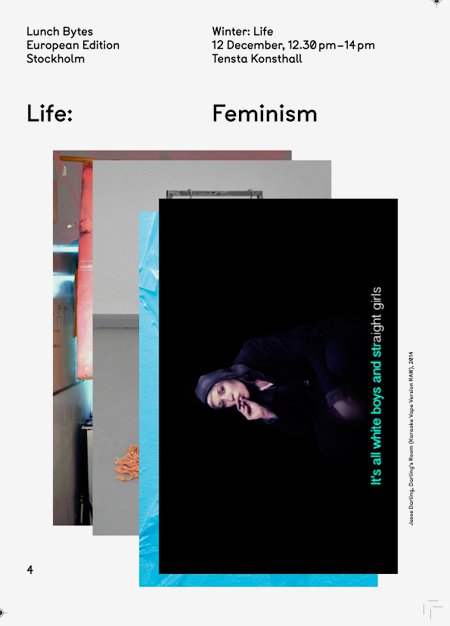
Life: Feminism, Stockholm, 2014, http://www.lunch-bytes.com/events/past/lunch-bytes-35/
“Lunch Bytes examines the consequences of the increasing ubiquity of digital technologies in the art world by addressing the role of the internet in artistic practice from a wide range of perspectives.The series consists of events, each dedicated to a different topic and bringing together artists, media scholars, designers, curators, and intellectuals.” —Melanie Bühler, excerpt
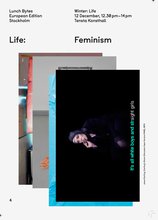
Life: Feminism, Stockholm, 2014, http://www.lunch-bytes.com/events/past/lunch-bytes-35/
(371)
2011
Snapshots from Sari Trails: Cyborgs Old and New
Radhika Gajjala
On Second Life, the fashioning of avatars and their profiles become identifiers of particular traveling cultural practices that are situated within both specific geographical locales and global virtual/real markets simultaneously. Thus, I view the crafting of avatar selves as situated practice at radically varying contextual disjunctural and conjunctural online-offline intersections. The avatar is a technological artifact as is the apparel designed for it. Without the avatar, the sari on Second Life cannot exist. However, an avatar also exerts agency. The avatar forms an identity and takes on roles in the communities that it participates in. […] In the case of the weaver too, he is at a human-technology continuum in another way. The weaver’s function in relation to the loom and the loom’s function in producing handloom textiles are clearly intertwined. The human being must become the cyborg weaver if he is to produce a good product. Both visually, aesthetically and affectively the weaver is immersed and appears as one with the machine’. The two must function together within a whole community that creates value for the weaver’s product through continued marketing, consumption, and use in cultural rituals. This is the only way to produce handloom material or there is no handloom cloth inexistence at all. Any piece of cloth that is not produced from this intense exchange between weaver, loom, the community of consumers, the dyers and spinners etc, would not carry the label of handloom, obviously.
2011, Radhika Gajjala, Social Identities 17, no. 3 (2011): pp. 393–408; excerpt pp. 402–403
https://www.are.na/block/7759519

“rad Zabibha (‘rZ’) in a Kanjeevaram sari (Cyberdivalive creations)”
On Second Life, the fashioning of avatars and their profiles become identifiers of particular traveling cultural practices that are situated within both specific geographical locales and global virtual/real markets simultaneously. Thus, I view the crafting of avatar selves as situated practice at radically varying contextual disjunctural and conjunctural online-offline intersections. The avatar is a technological artifact as is the apparel designed for it. Without the avatar, the sari on Second Life cannot exist. However, an avatar also exerts agency. The avatar forms an identity and takes on roles in the communities that it participates in. […] In the case of the weaver too, he is at a human-technology continuum in another way. The weaver’s function in relation to the loom and the loom’s function in producing handloom textiles are clearly intertwined. The human being must become the cyborg weaver if he is to produce a good product. Both visually, aesthetically and affectively the weaver is immersed and appears as one with the machine’. The two must function together within a whole community that creates value for the weaver’s product through continued marketing, consumption, and use in cultural rituals. This is the only way to produce handloom material or there is no handloom cloth inexistence at all. Any piece of cloth that is not produced from this intense exchange between weaver, loom, the community of consumers, the dyers and spinners etc, would not carry the label of handloom, obviously.
2011, Radhika Gajjala, Social Identities 17, no. 3 (2011): pp. 393–408; excerpt pp. 402–403
https://www.are.na/block/7759519
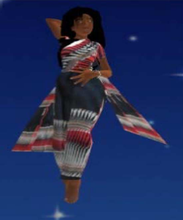
“rad Zabibha (‘rZ’) in a Kanjeevaram sari (Cyberdivalive creations)”
(372)
2011–
2015
Momentum: Women/Art/Technology
Judith Brodsky, Ferris Olin, Muriel Magenta
“Momentum: Women/Art/Technology aims to create and disseminate an important collaborative dialogue through digital imagery and the written words. This endeavor involves a global community of women who embrace technology as their mode of expression.
Participants include: artists, curators, authors, art historians, educators and technologists. Emerging professionals participate side by side with established professionals in order to inspire and promote a new generation of women to engage in all aspects of digital technology. The intergenerational component is to generate ongoing research in the field, constantly uncovering new material to rethink and redefine technology as it apples to art and women.” —Judith Brodsky, Ferris Olin, Muriel Magenta, http://momentum-women-art-technology.com/about.htm
http://momentum-women-art-technology.com/
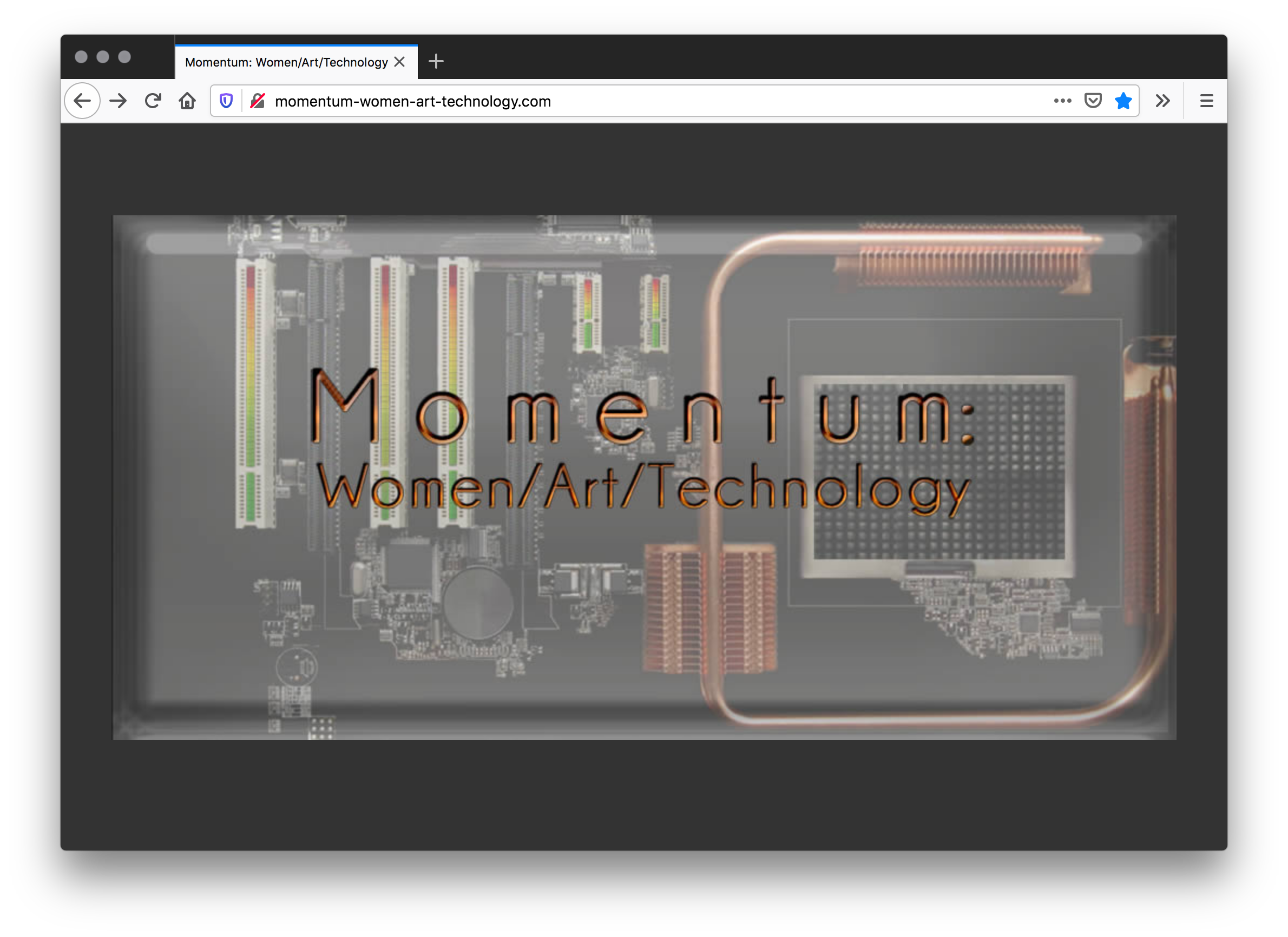
Screenshot, 2020, Firefox v76.0.1 on Mac OS 10.13.3; http://momentum-women-art-technology.com/

Screenshot, 2020, Firefox v76.0.1 on Mac OS 10.13.3; http://momentum-women-art-technology.com/momentum-motherboard.htm
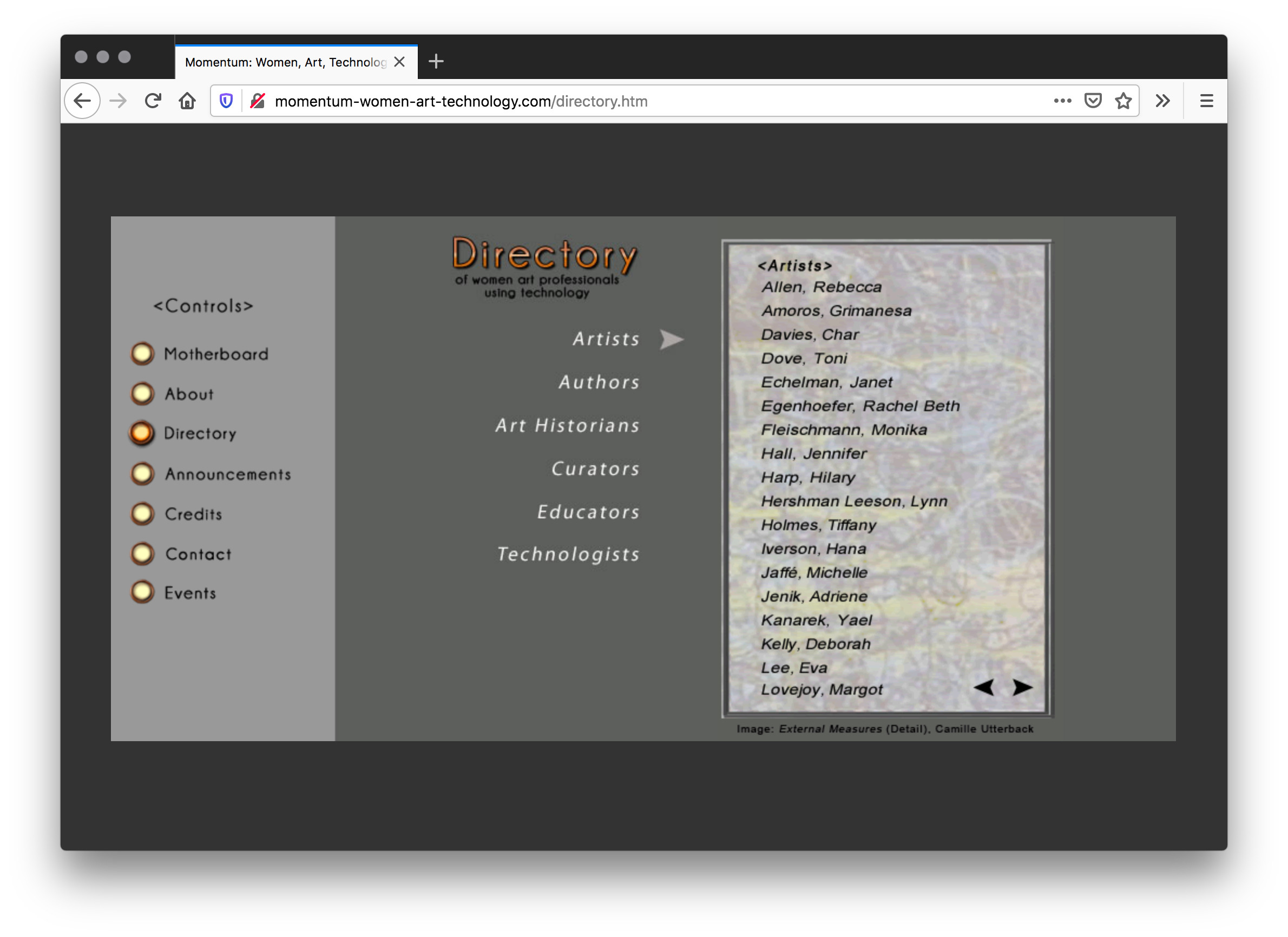
Screenshot, 2020, Firefox v76.0.1 on Mac OS 10.13.3; http://momentum-women-art-technology.com/directory.htm
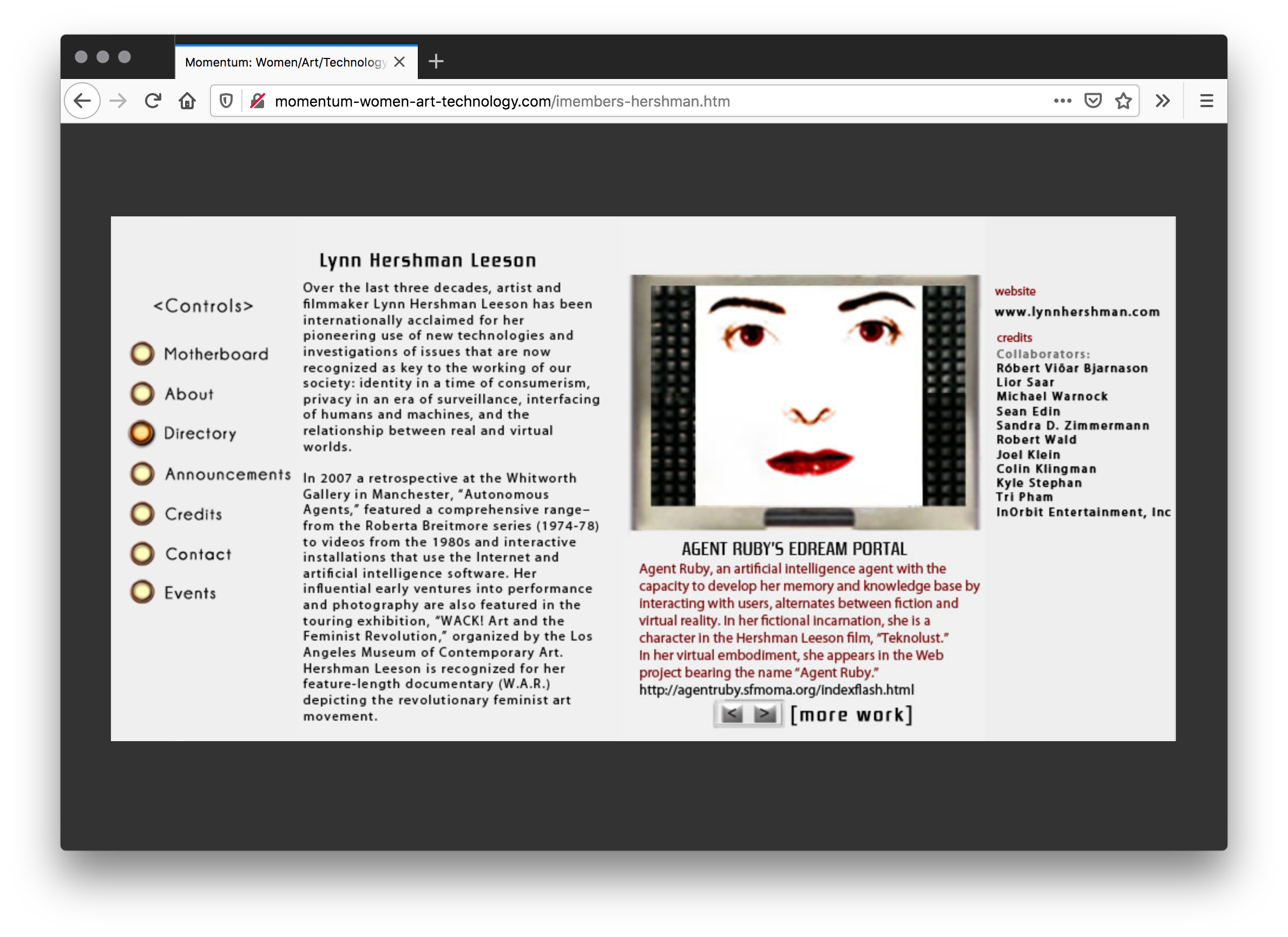
Screenshot, 2020, Firefox v76.0.1 on Mac OS 10.13.3; http://momentum-women-art-technology.com/imembers-hershman.htm
“Momentum: Women/Art/Technology aims to create and disseminate an important collaborative dialogue through digital imagery and the written words. This endeavor involves a global community of women who embrace technology as their mode of expression.
Participants include: artists, curators, authors, art historians, educators and technologists. Emerging professionals participate side by side with established professionals in order to inspire and promote a new generation of women to engage in all aspects of digital technology. The intergenerational component is to generate ongoing research in the field, constantly uncovering new material to rethink and redefine technology as it apples to art and women.” —Judith Brodsky, Ferris Olin, Muriel Magenta, http://momentum-women-art-technology.com/about.htm
http://momentum-women-art-technology.com/
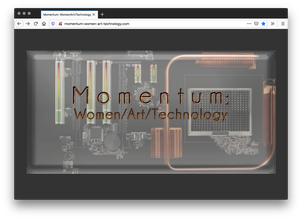
Screenshot, 2020, Firefox v76.0.1 on Mac OS 10.13.3; http://momentum-women-art-technology.com/
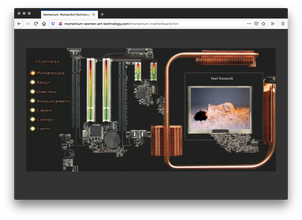
Screenshot, 2020, Firefox v76.0.1 on Mac OS 10.13.3; http://momentum-women-art-technology.com/momentum-motherboard.htm
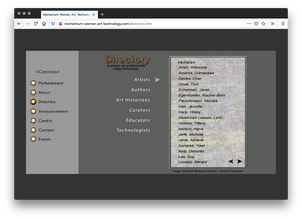
Screenshot, 2020, Firefox v76.0.1 on Mac OS 10.13.3; http://momentum-women-art-technology.com/directory.htm
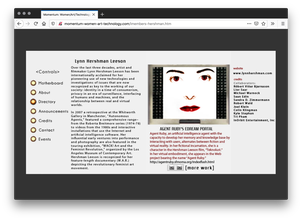
Screenshot, 2020, Firefox v76.0.1 on Mac OS 10.13.3; http://momentum-women-art-technology.com/imembers-hershman.htm
(373)
2011–
2014
Freakabolic
Paula Pin
de la cultura hacker vs natura hacker $%%$%$%$%$%$%$
si en parte re-conocemos nuestra cultura generada a partir de la natura, cómo es que ambas agencias permanecen en ocasiones todavía enfrentadas? como si fuesen cuasi opuestas, diferentes; porqué esa separación del conocimiento intrínseco de las cosas, de la vida, de los cuerpos y seres que metabolizan,
cómo acercamos a un conocimiento más profundo del entorno, de nosotros mismos, liberando nuestros cuerpos a través de prácticas abiertas, naturaleza libre, cultura libre, placer libre en el fluir constante de la vida;
ondas, frecuencias espectros de emoción a cada instante, revelando nuestra natura, la materia que nos deforma, nos hibridamos en nuevos seres, metacuerpos y metaentes, maya elástica que deviene entorno !! ! !! !
hacker culture vs nature hacker $ %% $% $% $% $% $% $
If in part we re-know our culture generated from nature, how is it that the two agencies sometimes still face each other? as if they were almost opposite, different; why this separation of the intrinsic knowledge of things, of life, of bodies and beings that metabolize,
how do we approach a deeper knowledge of the environment, of ourselves, releasing our bodies through open practices, free nature, free culture, free pleasure in the constant flow of life;
waves, spectral frequencies of emotion at every moment, revealing our nature, the matter that deforms us, we hybridize into new beings, metabodies and metaentes, elastic maya that becomes environment !! ! !! !
2011, Paula Pin, https://freakabolic.hotglue.me/; excerpt from “mwbiopunk,” Freakabolic, https://freakabolic.hotglue.me/?mwbiopunk
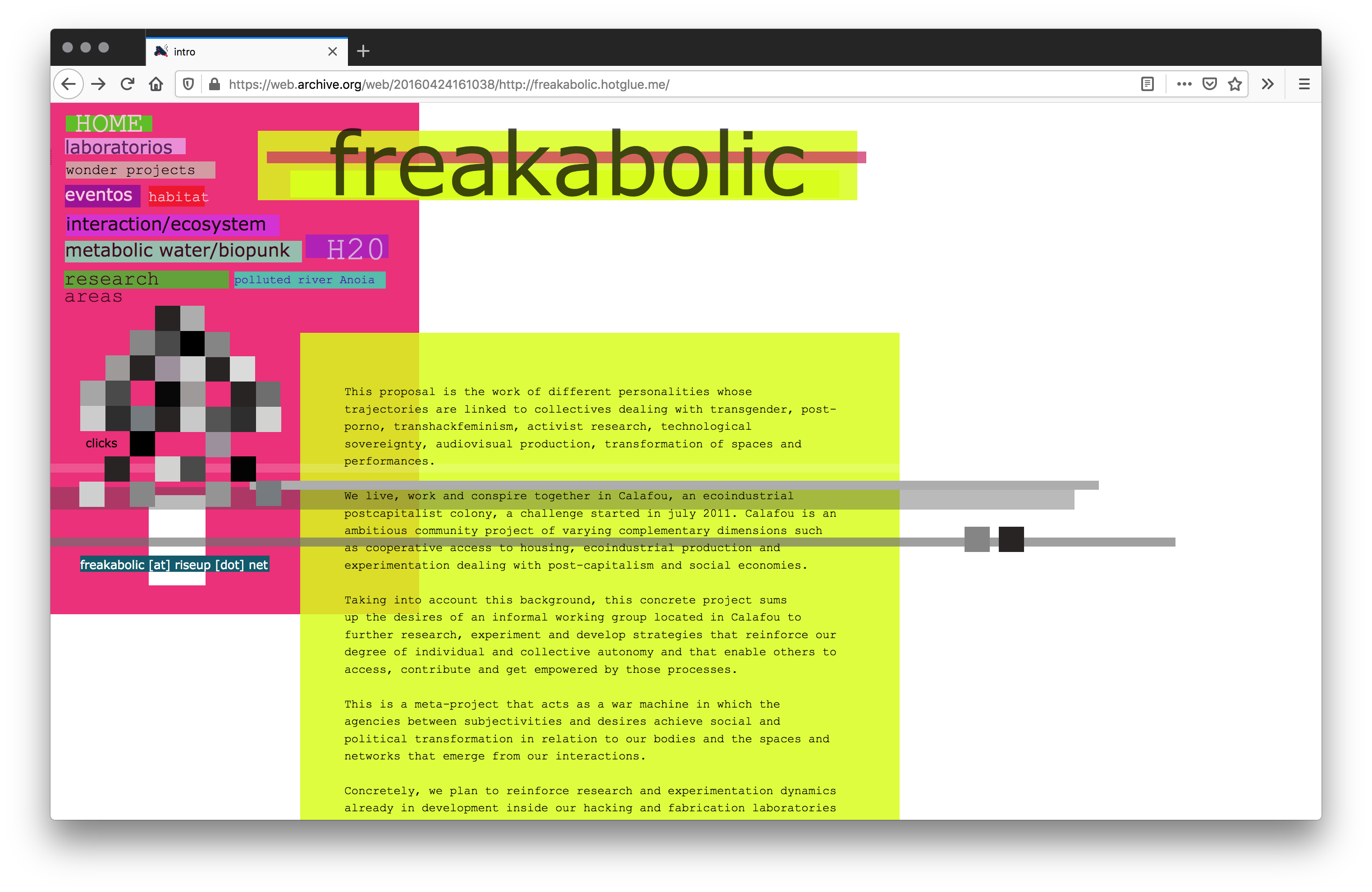
Screenshot, 2020, Firefox v76.0.1 on Mac OS 10.13.3; https://web.archive.org/web/20160424161038/http://freakabolic.hotglue.me/
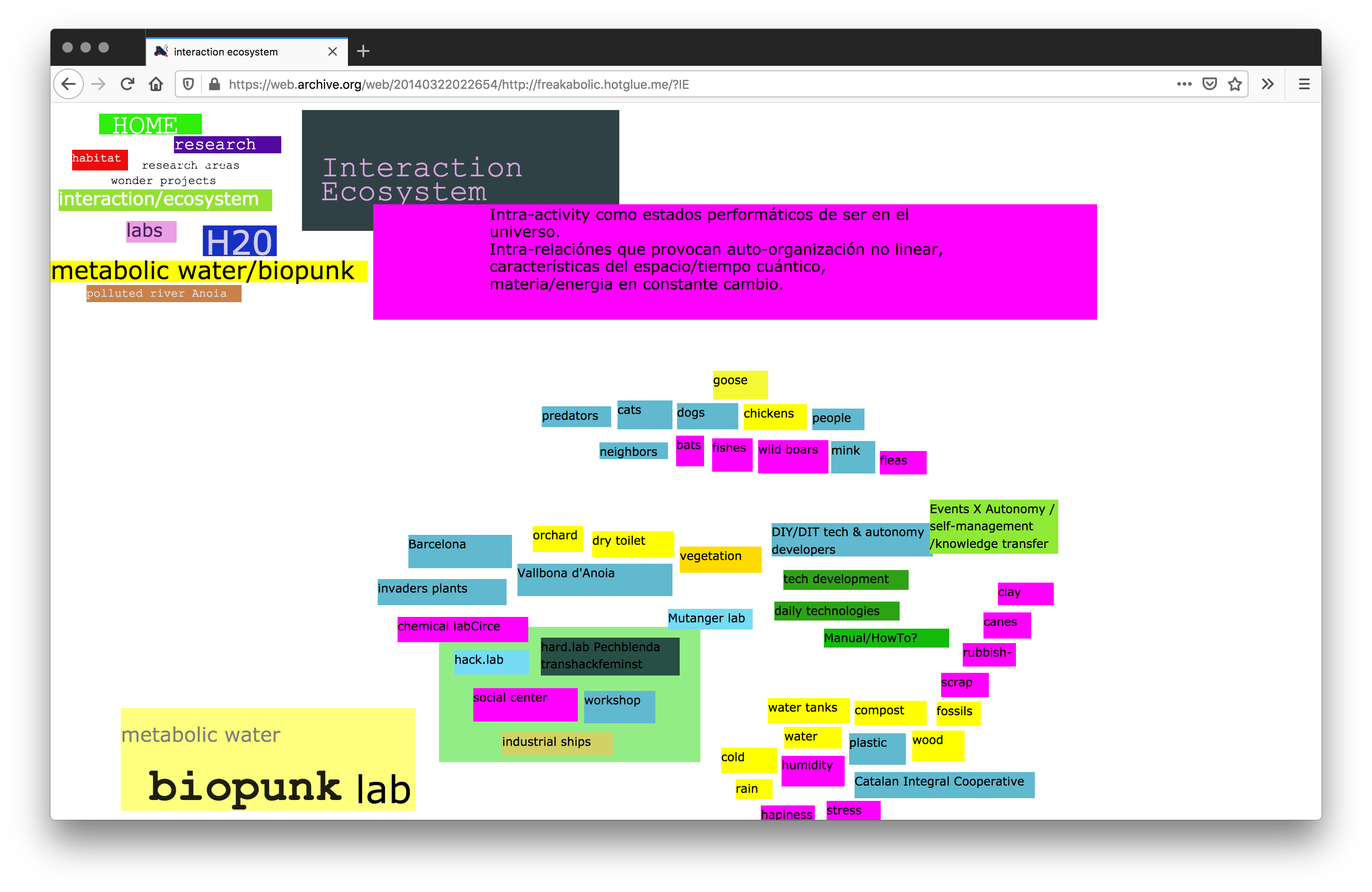
Screenshot, 2020, Firefox v76.0.1 on Mac OS 10.13.3; https://web.archive.org/web/20140322022654/http://freakabolic.hotglue.me/?IE
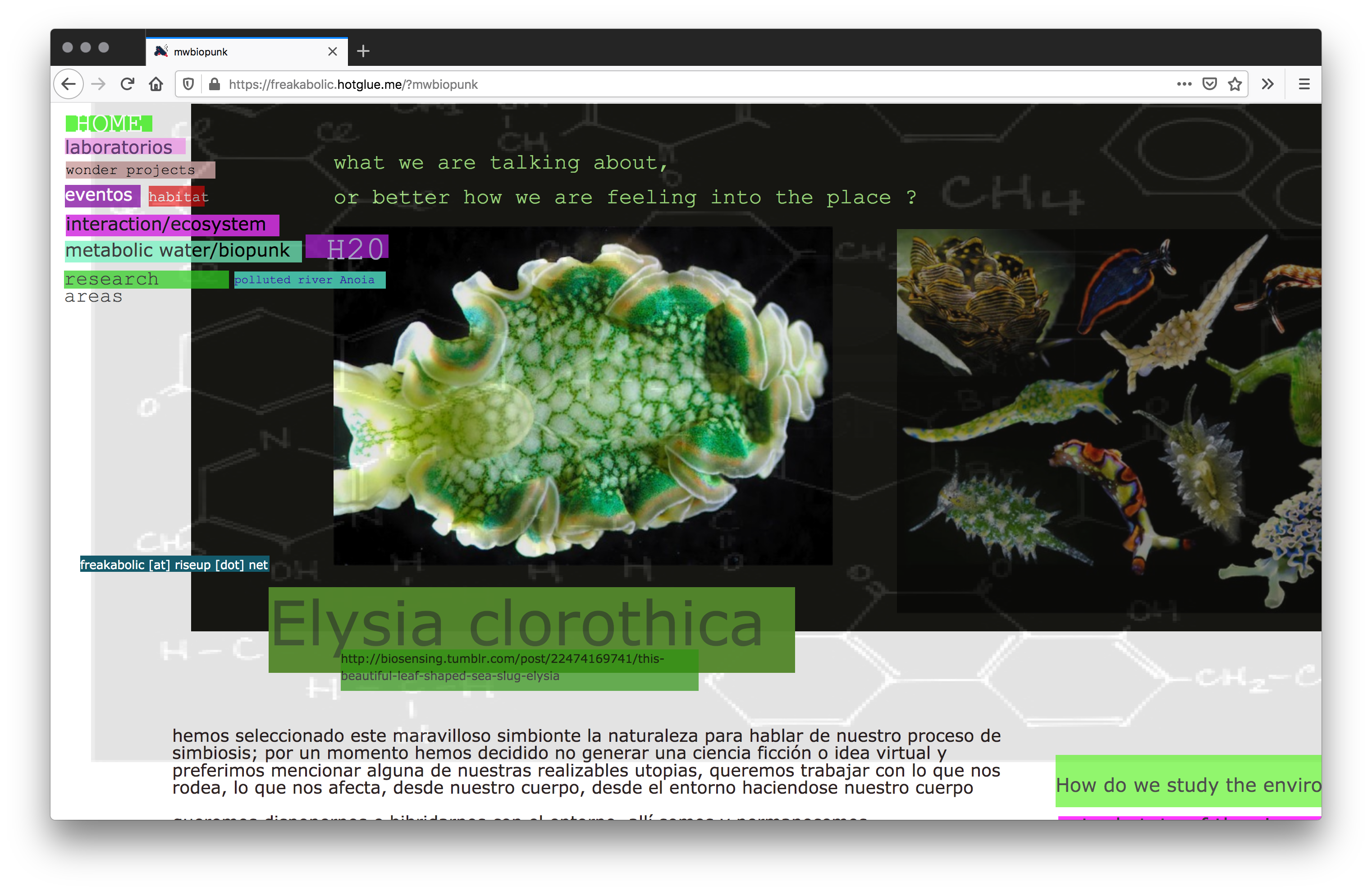
Screenshot, 2020, Firefox v76.0.1 on Mac OS 10.13.3; https://freakabolic.hotglue.me/?mwbiopunk

image from https://freakabolic.hotglue.me/?mwbiopunk
de la cultura hacker vs natura hacker $%%$%$%$%$%$%$
si en parte re-conocemos nuestra cultura generada a partir de la natura, cómo es que ambas agencias permanecen en ocasiones todavía enfrentadas? como si fuesen cuasi opuestas, diferentes; porqué esa separación del conocimiento intrínseco de las cosas, de la vida, de los cuerpos y seres que metabolizan,
cómo acercamos a un conocimiento más profundo del entorno, de nosotros mismos, liberando nuestros cuerpos a través de prácticas abiertas, naturaleza libre, cultura libre, placer libre en el fluir constante de la vida;
ondas, frecuencias espectros de emoción a cada instante, revelando nuestra natura, la materia que nos deforma, nos hibridamos en nuevos seres, metacuerpos y metaentes, maya elástica que deviene entorno !! ! !! !
hacker culture vs nature hacker $ %% $% $% $% $% $% $
If in part we re-know our culture generated from nature, how is it that the two agencies sometimes still face each other? as if they were almost opposite, different; why this separation of the intrinsic knowledge of things, of life, of bodies and beings that metabolize,
how do we approach a deeper knowledge of the environment, of ourselves, releasing our bodies through open practices, free nature, free culture, free pleasure in the constant flow of life;
waves, spectral frequencies of emotion at every moment, revealing our nature, the matter that deforms us, we hybridize into new beings, metabodies and metaentes, elastic maya that becomes environment !! ! !! !
2011, Paula Pin, https://freakabolic.hotglue.me/; excerpt from “mwbiopunk,” Freakabolic, https://freakabolic.hotglue.me/?mwbiopunk
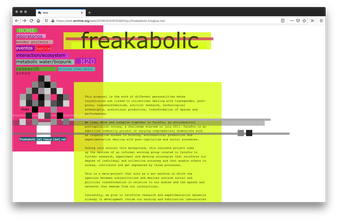
Screenshot, 2020, Firefox v76.0.1 on Mac OS 10.13.3; https://web.archive.org/web/20160424161038/http://freakabolic.hotglue.me/
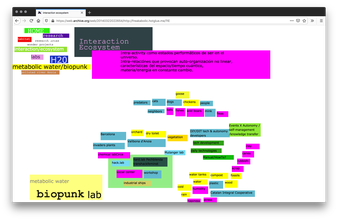
Screenshot, 2020, Firefox v76.0.1 on Mac OS 10.13.3; https://web.archive.org/web/20140322022654/http://freakabolic.hotglue.me/?IE
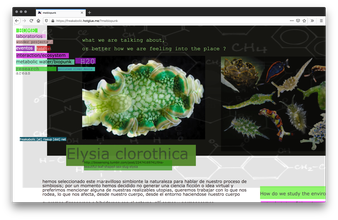
Screenshot, 2020, Firefox v76.0.1 on Mac OS 10.13.3; https://freakabolic.hotglue.me/?mwbiopunk
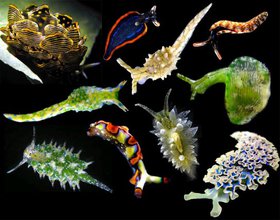
image from https://freakabolic.hotglue.me/?mwbiopunk
(374)
2011
Netzfeminismus
Der „neue Feminismus im Netz“ ist unübersehbar. Weltweit entstehen namhafte feministische Blogs. Auf der re:publica 2011 trafen sich die „neuen“ und die „alten“ Netzfeminstinnen und sprachen über ihre Erfahrungen, Ziele und die gemeinsame Zukunft. Dabei entdecken Frauen aller Alter viele Gemeinsamkeiten, auch jenseits der Geschlechterfrage. Der Austausch und die Vernetzung sind das oberste Anliegen des Netzfeminismus. Mitmachen kann jedeR.
The “new feminism on the Internet” is unmistakable. Well-known feminist blogs are created worldwide. At the re:publica 2011 the “new” and the “old” network women met and talked about their experiences, goals and the common future. Women of all ages discover many things in common, even beyond the gender issue. Exchange and networking are the top priorities of network feminism. Everyone can participate.
https://web.archive.org/web/20111111033514/http://netzfeminismus.org/
Der „neue Feminismus im Netz“ ist unübersehbar. Weltweit entstehen namhafte feministische Blogs. Auf der re:publica 2011 trafen sich die „neuen“ und die „alten“ Netzfeminstinnen und sprachen über ihre Erfahrungen, Ziele und die gemeinsame Zukunft. Dabei entdecken Frauen aller Alter viele Gemeinsamkeiten, auch jenseits der Geschlechterfrage. Der Austausch und die Vernetzung sind das oberste Anliegen des Netzfeminismus. Mitmachen kann jedeR.
The “new feminism on the Internet” is unmistakable. Well-known feminist blogs are created worldwide. At the re:publica 2011 the “new” and the “old” network women met and talked about their experiences, goals and the common future. Women of all ages discover many things in common, even beyond the gender issue. Exchange and networking are the top priorities of network feminism. Everyone can participate.
https://web.archive.org/web/20111111033514/http://netzfeminismus.org/
(375)
2011
Why Are There No Great Women Net Artists? Vague Histories of Female Contribution According to Video and Internet Art
Jennifer Chan
My critique does not claim that there are no women internet artists or that there are none who are great enough to make a significant contribution to the fields of art and technology. There are, but they are not thoroughly recognized by their community and art institutions for their work alone. My analysis would not be complete without reconsidering the immeasurable gains in visibility made by the efforts of early feminist work from the 1970s, cyberfeminism from the 1990s or third wave sociological perspectives of the now. Because of the previous successes of feminism, women may feel less confined with self-representation on the internet. Thus, my grievance lies in the scarcity of women with web-based practices entering exhibition spaces. […] In order to increase female presence in exhibition spaces, arts administrators need to look beyond the femaleness or “feminism” of the work, to consider its form and content in relation to the concept during the evaluation of “Great” art.
2011, Jennifer Chan, https://pooool.info/why-are-there-no-great-women-net-artists-2/; referred by Xin Xin
https://www.are.na/block/8127379
My critique does not claim that there are no women internet artists or that there are none who are great enough to make a significant contribution to the fields of art and technology. There are, but they are not thoroughly recognized by their community and art institutions for their work alone. My analysis would not be complete without reconsidering the immeasurable gains in visibility made by the efforts of early feminist work from the 1970s, cyberfeminism from the 1990s or third wave sociological perspectives of the now. Because of the previous successes of feminism, women may feel less confined with self-representation on the internet. Thus, my grievance lies in the scarcity of women with web-based practices entering exhibition spaces. […] In order to increase female presence in exhibition spaces, arts administrators need to look beyond the femaleness or “feminism” of the work, to consider its form and content in relation to the concept during the evaluation of “Great” art.
2011, Jennifer Chan, https://pooool.info/why-are-there-no-great-women-net-artists-2/; referred by Xin Xin
https://www.are.na/block/8127379
(376)
2011
One Feminist Online Media Mantrafesto
Alexandra Juhasz
Access begs literacy
Literacy initiates production
Mass production fosters popularity.
Popularity produces virality
Virality forecloses context, shared interests and vocabulary, and local community
Community is built upon safety.
Safety fosters the sharing of voice and responsibility
Shared responsibility is necessary for democracy
Democracy protects vulnerability.
Vulnerability forecloses visibility
Visibility demands a safe space
Safe spaces need rules and hierarchies.
Rules and hierarchies require transparency and process
Process is built upon equal voices
All voices want a body.
A body needs to be visible
Visibility allows for warranting
Warranting insures civility and positionality.
Positionality fosters political community
Political communities demand spaces, both virtual and real
Spaces demand access
2011, Alexandra Juhasz, http://www.feministonlinespaces.com/; submitted by Alexandra Juhasz
“Mantrafesto” suggested by Thomas Burkdall.
http://www.feministonlinespaces.com/
Access begs literacy
Literacy initiates production
Mass production fosters popularity.
Popularity produces virality
Virality forecloses context, shared interests and vocabulary, and local community
Community is built upon safety.
Safety fosters the sharing of voice and responsibility
Shared responsibility is necessary for democracy
Democracy protects vulnerability.
Vulnerability forecloses visibility
Visibility demands a safe space
Safe spaces need rules and hierarchies.
Rules and hierarchies require transparency and process
Process is built upon equal voices
All voices want a body.
A body needs to be visible
Visibility allows for warranting
Warranting insures civility and positionality.
Positionality fosters political community
Political communities demand spaces, both virtual and real
Spaces demand access
2011, Alexandra Juhasz, http://www.feministonlinespaces.com/; submitted by Alexandra Juhasz
“Mantrafesto” suggested by Thomas Burkdall.
http://www.feministonlinespaces.com/
(377)
2011–
2019
Feminist Online Spaces
Alexandra Juhasz
Feminist Online Spaces was a 2011–2013 project aimed at researching, teaching, talking about and otherwise building-towards online spaces that are defined by feminist and other progressive principles of community, visibility, discourse, and politics. It houses various media conversations and objects about bringing the norms, ideas, structures, legacies, and practices of offline feminist space to the Internet.
It is being revisited in Spring 2019 by students in MALS 72200, Contemporary Feminist Theories, at the CUNY Graduate Center.
Your media and conversation will create both the content and ideas about structure and norms for the site. Your participation is of particular relevance in line with these two founding goals:
1. to move Internet practices from COMMENTING to CONNECTION
2. to move Internet practices from RECEPTION or USE to PRODUCTION or COLLABORATION
2011–2013, 2019, Alexandra Juhasz, http://www.feministonlinespaces.com/, submitted by Alexandra Juhasz
Feminist Online Spaces was a 2011–2013 project aimed at researching, teaching, talking about and otherwise building-towards online spaces that are defined by feminist and other progressive principles of community, visibility, discourse, and politics. It houses various media conversations and objects about bringing the norms, ideas, structures, legacies, and practices of offline feminist space to the Internet.
It is being revisited in Spring 2019 by students in MALS 72200, Contemporary Feminist Theories, at the CUNY Graduate Center.
Your media and conversation will create both the content and ideas about structure and norms for the site. Your participation is of particular relevance in line with these two founding goals:
1. to move Internet practices from COMMENTING to CONNECTION
2. to move Internet practices from RECEPTION or USE to PRODUCTION or COLLABORATION
2011–2013, 2019, Alexandra Juhasz, http://www.feministonlinespaces.com/, submitted by Alexandra Juhasz
(378)
2011
Angry Women
Annie Abrahams
An artistic research project:
on remote communication and collaboration using anger as a pretext
on female anger using webcam performances as a facilitator
At the start with:
Albertine Meunier
Anne Laforet
Annie Abrahams
Antye Greie aka AGF
Bérénice Belpaire
Caroline Delieutraz
Gretta Louw
Hedva Eltanani
Helen Varley Jamieson (x)
Hortense Gauthier
Ienke Kastelein
Inès Kchaou
Julie Chateauvert
KaReN
Laurence Moletta
Laurie Bellanca
Lizvlx
Lucille Calmel
Martina Ruhsam
Olga P Massanet
Olga Kisseleva
Pascale Barret
Paula Roush
Sabine Revillet
Simona Polvani
Suzon Fuks
Ursula Endlicher
This group is constituted of ladies I [Annie Abrahams] met sometime, somewhere via the internet and whose work is related to computer, performance, writing and or contemporay art practice.
2011–present, Annie Abrahams, https://bram.org/angry/women/; submitted by Annie Abrahams

Angry Woman, screencapture at the end of the workshop from Bodies:On:Line the Magdalena Online Festival, image from https://bram.org/angry/women/
An artistic research project:
on remote communication and collaboration using anger as a pretext
on female anger using webcam performances as a facilitator
At the start with:
Albertine Meunier
Anne Laforet
Annie Abrahams
Antye Greie aka AGF
Bérénice Belpaire
Caroline Delieutraz
Gretta Louw
Hedva Eltanani
Helen Varley Jamieson (x)
Hortense Gauthier
Ienke Kastelein
Inès Kchaou
Julie Chateauvert
KaReN
Laurence Moletta
Laurie Bellanca
Lizvlx
Lucille Calmel
Martina Ruhsam
Olga P Massanet
Olga Kisseleva
Pascale Barret
Paula Roush
Sabine Revillet
Simona Polvani
Suzon Fuks
Ursula Endlicher
This group is constituted of ladies I [Annie Abrahams] met sometime, somewhere via the internet and whose work is related to computer, performance, writing and or contemporay art practice.
2011–present, Annie Abrahams, https://bram.org/angry/women/; submitted by Annie Abrahams
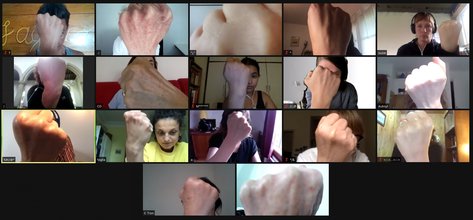
Angry Woman, screencapture at the end of the workshop from Bodies:On:Line the Magdalena Online Festival, image from https://bram.org/angry/women/
(379)
2011–
2012
Internet is TV
Laura Balboa
.TV refers to television in the Internet. Mass media and communication are articulating more and more based on nodes, communities and people communication needs and habits through tubes and nets where domains and corporations try to regulate, intermediate and control this information flow. End users are the fuel for the system.
The meaning of the word domain involves a territory over which rule or control is exercised . Who owns what? .tv is an adaptation of the television cognitive sense to a “virtual” world with no apparent boundaries. The .TV domain suffix is a nomenclature assigned at first (by the Internet global authorities such as IANA) to a small country named Tuvalu.
The internetis.tv project seeks to develop a critical notice on the uniformity of geopolitical power by recovering information on the uses of domains. In doing so, it shows that the commercial imago on the net leads to serious omissions that, in turn, lead to disinformation and restricted access to critical realities. internetis.tv wants to be marketed as a domain for the television industry, but it remains as the country top level domain of Tuvalu, a country in danger of disappearing due to the ecological decay and global warming.
2011–2012, Laura Balboa, https://www.internetis.tv/; submitted by Laura Balboa
.TV refers to television in the Internet. Mass media and communication are articulating more and more based on nodes, communities and people communication needs and habits through tubes and nets where domains and corporations try to regulate, intermediate and control this information flow. End users are the fuel for the system.
The meaning of the word domain involves a territory over which rule or control is exercised . Who owns what? .tv is an adaptation of the television cognitive sense to a “virtual” world with no apparent boundaries. The .TV domain suffix is a nomenclature assigned at first (by the Internet global authorities such as IANA) to a small country named Tuvalu.
The internetis.tv project seeks to develop a critical notice on the uniformity of geopolitical power by recovering information on the uses of domains. In doing so, it shows that the commercial imago on the net leads to serious omissions that, in turn, lead to disinformation and restricted access to critical realities. internetis.tv wants to be marketed as a domain for the television industry, but it remains as the country top level domain of Tuvalu, a country in danger of disappearing due to the ecological decay and global warming.
2011–2012, Laura Balboa, https://www.internetis.tv/; submitted by Laura Balboa
(380)
2012
Race After the Internet
Lisa Nakamura, Peter Chow-White
The current generation of young people is the first to have always had access to the Internet; these so-called digital natives are both hailed as omnipotently connected and decried as fatally distracted. […] The paradox of race after the Age of the Internet, a period that some have defined as “postracial” as well as “postfeminist,” lies in such seeming contradictions. […] Yet no matter how “digital” we become, the continuing problem of social inequality along racial lines persists. As our social institutions and culture become increasingly digitally mediatized, regularly saturated with new platforms, devices, and applications that enable always-on computing and networking, digital media bursts the bounds of the Internet and the personal computer. […] Equally important but often less discussed is this: the digital is altering our understanding of what race is as well as nurturing new types of inequality along racial lines.
2012, Lisa Nakamura and Peter Chow-White, eds. (New York: Routledge, 2012); excerpt from Lisa Nakamura and Peter Chow-White, introduction to Nakamura and Chow-White, Race After the Internet, pp. 1–2
Contributors include danah boyd, Peter Chow-White, Wendy Chun, Sasha Costanza-Chock, Troy Duster, Anna Everett, Rayvon Fouché, Alexander Galloway, Oscar Gandy, Eszter Hargittai, Jeong Won Hwang, Curtis Marez, Tara McPherson, Alondra Nelson, Christian Sandvig, and Ernest Wilson.
http://www.routledge.com/books/details/9780415802369/
The current generation of young people is the first to have always had access to the Internet; these so-called digital natives are both hailed as omnipotently connected and decried as fatally distracted. […] The paradox of race after the Age of the Internet, a period that some have defined as “postracial” as well as “postfeminist,” lies in such seeming contradictions. […] Yet no matter how “digital” we become, the continuing problem of social inequality along racial lines persists. As our social institutions and culture become increasingly digitally mediatized, regularly saturated with new platforms, devices, and applications that enable always-on computing and networking, digital media bursts the bounds of the Internet and the personal computer. […] Equally important but often less discussed is this: the digital is altering our understanding of what race is as well as nurturing new types of inequality along racial lines.
2012, Lisa Nakamura and Peter Chow-White, eds. (New York: Routledge, 2012); excerpt from Lisa Nakamura and Peter Chow-White, introduction to Nakamura and Chow-White, Race After the Internet, pp. 1–2
Contributors include danah boyd, Peter Chow-White, Wendy Chun, Sasha Costanza-Chock, Troy Duster, Anna Everett, Rayvon Fouché, Alexander Galloway, Oscar Gandy, Eszter Hargittai, Jeong Won Hwang, Curtis Marez, Tara McPherson, Alondra Nelson, Christian Sandvig, and Ernest Wilson.
http://www.routledge.com/books/details/9780415802369/
(381)
2012
The Transreal: Political Aesthetics of Crossing Realities
micha cárdenas, Elle Mehrmand, Amy Sara Carroll
The transreal slips. Existing in multiple realities, transreal gestures tumble, shift, and fall through different locations and meanings without moving. Emerging out of thinking about my experience as a transgender woman and the intersections of gender and contemporary networked technology, I created the concept transreal. […] The transreal emerged from a feeling of political urgency in a time of war, economic collapse, the contemporary slavery of the Prison Industrial Complex and daily violence against people around the world, and a desperate urge to find new forms of political action able to address the biopolitics of gender and infiltrate digital networks of communication. […] The transreal is the embracing of an identity that is a combination of my “real” body that I was born with and my personal history with another identity that I have written in flesh, in words, in pixels, in 3-dimensional models and across multiple strata of communications technologies. To say that I am transreal is a strategy for embracing a gender that exceeds daily reality on Planet Earth, and that says back to all the people who have tried to make me choose between man or woman that I choose to be a shape-shifter, a dragon and a light wave.
2012, Zach Blas and Wolfgang Schirmmacher, eds. (New York: Atropos Press, 2012); excerpt from Zach Blas and Wolfgang Schirmmacher, introduction to Blas and Schirmmacher, The Transreal, pp. 30–31; referred by Xin Xin
https://www.atropospress.com/the-transreal-political-aesthetics-of-crossing-realities/
The transreal slips. Existing in multiple realities, transreal gestures tumble, shift, and fall through different locations and meanings without moving. Emerging out of thinking about my experience as a transgender woman and the intersections of gender and contemporary networked technology, I created the concept transreal. […] The transreal emerged from a feeling of political urgency in a time of war, economic collapse, the contemporary slavery of the Prison Industrial Complex and daily violence against people around the world, and a desperate urge to find new forms of political action able to address the biopolitics of gender and infiltrate digital networks of communication. […] The transreal is the embracing of an identity that is a combination of my “real” body that I was born with and my personal history with another identity that I have written in flesh, in words, in pixels, in 3-dimensional models and across multiple strata of communications technologies. To say that I am transreal is a strategy for embracing a gender that exceeds daily reality on Planet Earth, and that says back to all the people who have tried to make me choose between man or woman that I choose to be a shape-shifter, a dragon and a light wave.
2012, Zach Blas and Wolfgang Schirmmacher, eds. (New York: Atropos Press, 2012); excerpt from Zach Blas and Wolfgang Schirmmacher, introduction to Blas and Schirmmacher, The Transreal, pp. 30–31; referred by Xin Xin
https://www.atropospress.com/the-transreal-political-aesthetics-of-crossing-realities/
(382)
2012
Afrotopia
Ingrid LaFleur
At the center of AFROTOPIA is the experimentation of technology to emancipate the Black body and create alternative destinies. Through the visual language of science fiction, fantasy, magical realism and horror we are able to ignite the imagination, challenge our perspectives and develop new ones that push past boundaries set forth by white supremacist and patriarchal institutions.
2012, Ingrid LaFleur, http://www.afrotopiaisnow.com/; referred by Charlotte Webb
Detroit
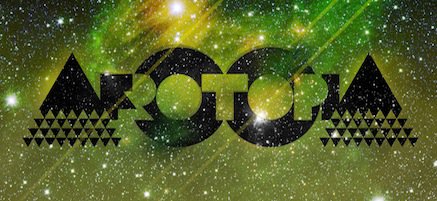
Designed by Wesley Taylor, artifact from https://web.archive.org/web/20141110082708/https://afrotopiaisnow.com/;
At the center of AFROTOPIA is the experimentation of technology to emancipate the Black body and create alternative destinies. Through the visual language of science fiction, fantasy, magical realism and horror we are able to ignite the imagination, challenge our perspectives and develop new ones that push past boundaries set forth by white supremacist and patriarchal institutions.
2012, Ingrid LaFleur, http://www.afrotopiaisnow.com/; referred by Charlotte Webb
Detroit
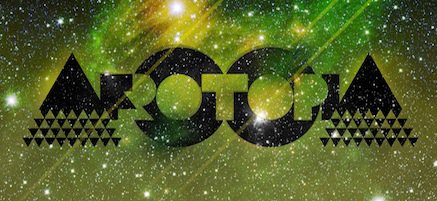
Designed by Wesley Taylor, artifact from https://web.archive.org/web/20141110082708/https://afrotopiaisnow.com/;
(383)
2012
Cyberculture and the Subaltern: Weavings of the Virtual and Real
Radhika Gajjala
I map a particular path in examining how voice and silence shape online space in relation to offline actualities. Implicit in this investigation is also the question of how offline actualities and online cultures are in turn shaped by online hierarchies as well as different kinds of local access to global contexts. Underlying the whole project, of course, is the revealing of a logic of particular “global/local” trajectories that emerge in the context of digital, trans-national capital and labor flows. […] Through interdisciplinary lenses enabled by cultural studies and feminist methodologies, this work looks at online microfinance, new technologies and virtual world marketing, and handloom contexts from India and Africa in relation to development discourse that posits a binary between “tradition” and modernity. […] Cyberspaces have become the nodes at which various locals connect and disconnect in the production of the global. […] So rather than say “first world” and “third-world” or even “rural” and “urban”or even global and local, virtual and real, or east and west, we need to develop a different vocabulary to talk about what is happening.
2012, Radhika Gajjala, ed. (Plymouth, MA: Lexington Books, 2012); excerpt from Radhika Gajjala, “Introduction: Subaltern Empowerment, Socioeconomic Globalization, and Digital Divides,” in Gajjala, Cyberculture and the Subaltern, pp. 2–3
https://www.are.na/block/7760216
I map a particular path in examining how voice and silence shape online space in relation to offline actualities. Implicit in this investigation is also the question of how offline actualities and online cultures are in turn shaped by online hierarchies as well as different kinds of local access to global contexts. Underlying the whole project, of course, is the revealing of a logic of particular “global/local” trajectories that emerge in the context of digital, trans-national capital and labor flows. […] Through interdisciplinary lenses enabled by cultural studies and feminist methodologies, this work looks at online microfinance, new technologies and virtual world marketing, and handloom contexts from India and Africa in relation to development discourse that posits a binary between “tradition” and modernity. […] Cyberspaces have become the nodes at which various locals connect and disconnect in the production of the global. […] So rather than say “first world” and “third-world” or even “rural” and “urban”or even global and local, virtual and real, or east and west, we need to develop a different vocabulary to talk about what is happening.
2012, Radhika Gajjala, ed. (Plymouth, MA: Lexington Books, 2012); excerpt from Radhika Gajjala, “Introduction: Subaltern Empowerment, Socioeconomic Globalization, and Digital Divides,” in Gajjala, Cyberculture and the Subaltern, pp. 2–3
https://www.are.na/block/7760216
(384)
2012
Cyberfeminism 2.0
Radhika Gajjala, Yeon Ju Oh
[Faith Wilding and Critical Art Ensemble’s] persistent use of the word “Net,” now somewhat archaic, reflects the vision of new media technology as a ground for networking, that is, collective feminist theorizing and practice. […] Cyberfeminism necessitates an awareness of how power plays not only in different locations online but also in institutions that shape the layout and experience of cyberspace. […] This collection is meant to be an exploration of what it means to be cyberfeminist now, more than a decade after feminists burst forth onto the Internet scene to demand material access and social intervention both online and offline. What, for instance, does it mean to be “cyberfeminist” at a time when women are omnipresent on the Internet as consumers and as paid and free laborers? […] How do race, class, place, space, ethnicity, religion, and nationalism play into how women negotiate various techno-mediated environments online and offline? In other words, where have all the cyberfeminists gone?
2012, Radhika Gajjala and Yeon Ju Oh, eds. (New York: Peter Lang, 2012); excerpt from Radhika Gajjala and Yeon Ju Oh, “Cyberfeminism 2.0: Where Have All the Cyberfeminists Gone?” in Gajjala and Oh, Cyberfeminism 2.0, p. 1
Contributors include Marina Levina, Jessie Daniels, Lauren Angelone, Rosalind Sibielski, Holly Kruse, Debbie James, Erica Kubik, Jessica L. Beyer, Genesis Downey, Jennifer Way, Dara Persis Murray, Becky Walker, Yeon Ju Oh, Natalia Rybas, and Koen Leurs.
https://www.peterlang.com/view/title/21724
[Faith Wilding and Critical Art Ensemble’s] persistent use of the word “Net,” now somewhat archaic, reflects the vision of new media technology as a ground for networking, that is, collective feminist theorizing and practice. […] Cyberfeminism necessitates an awareness of how power plays not only in different locations online but also in institutions that shape the layout and experience of cyberspace. […] This collection is meant to be an exploration of what it means to be cyberfeminist now, more than a decade after feminists burst forth onto the Internet scene to demand material access and social intervention both online and offline. What, for instance, does it mean to be “cyberfeminist” at a time when women are omnipresent on the Internet as consumers and as paid and free laborers? […] How do race, class, place, space, ethnicity, religion, and nationalism play into how women negotiate various techno-mediated environments online and offline? In other words, where have all the cyberfeminists gone?
2012, Radhika Gajjala and Yeon Ju Oh, eds. (New York: Peter Lang, 2012); excerpt from Radhika Gajjala and Yeon Ju Oh, “Cyberfeminism 2.0: Where Have All the Cyberfeminists Gone?” in Gajjala and Oh, Cyberfeminism 2.0, p. 1
Contributors include Marina Levina, Jessie Daniels, Lauren Angelone, Rosalind Sibielski, Holly Kruse, Debbie James, Erica Kubik, Jessica L. Beyer, Genesis Downey, Jennifer Way, Dara Persis Murray, Becky Walker, Yeon Ju Oh, Natalia Rybas, and Koen Leurs.
https://www.peterlang.com/view/title/21724
(385)
2012
Recoding Gender: Women’s Changing Participation in Computing
Janet Abbate
This book explores the untold history of women in computer science and programming from the Second World War to the late twentieth century. It demonstrates how gender has played an unacknowledged role in the history of computing, shaping beliefs and practices on issues ranging from the nature of expertise to the organization of work to the purpose of computer science. Although this is primarily a historical work, I also highlight connections between the gendered practices of the past and policy issues of today. In what has become a much-discussed paradox, women’s numbers in computing have declined since the mid-1980s in the United States and United Kingdom, even as women’s participation in other areas of science and technology has risen. Computer scientist Tracy Camp sounded the alarm in 1997 that women were leaving computer science in disproportionate numbers at every stage of education and academic employment, a phenomenon she dubbed “the incredible shrinking pipeline.”
2012, Janet Abbate (Cambridge, MA: MIT Press, 2012); excerpt p. 2
https://mitpress.mit.edu/books/recoding-gender
This book explores the untold history of women in computer science and programming from the Second World War to the late twentieth century. It demonstrates how gender has played an unacknowledged role in the history of computing, shaping beliefs and practices on issues ranging from the nature of expertise to the organization of work to the purpose of computer science. Although this is primarily a historical work, I also highlight connections between the gendered practices of the past and policy issues of today. In what has become a much-discussed paradox, women’s numbers in computing have declined since the mid-1980s in the United States and United Kingdom, even as women’s participation in other areas of science and technology has risen. Computer scientist Tracy Camp sounded the alarm in 1997 that women were leaving computer science in disproportionate numbers at every stage of education and academic employment, a phenomenon she dubbed “the incredible shrinking pipeline.”
2012, Janet Abbate (Cambridge, MA: MIT Press, 2012); excerpt p. 2
https://mitpress.mit.edu/books/recoding-gender
(386)
2012
Coding Freedom: The Ethics and Aesthetics of Hacking
E. Gabriella Coleman
Even if developers cannot legally guarantee the so-called FITNESS of software, they know that in many instances free software is often as useful as or in some cases superior to proprietary software. This fact brings hackers the same sort of pleasure, satisfaction, and pride that they derive when, and if, they are given free reign to hack. Further, even though hackers distribute their free software WITHOUT ANY WARRANTY, the law nevertheless enables them to create software that many deem superior to proprietary software—software that they all “hope … will be useful.” The freedom to labor within a framework of their own making is enabled by licenses that cleverly reformat copyright law to prioritize access, distribution, and circulation. Thus, hackers short-circuit the traditional uses of copyright: the right to exclude and control.
2012, E. Gabriella Coleman (Princeton, NJ: Princeton University Press, 2012); excerpt p. 1
https://press.princeton.edu/titles/9883.html
Even if developers cannot legally guarantee the so-called FITNESS of software, they know that in many instances free software is often as useful as or in some cases superior to proprietary software. This fact brings hackers the same sort of pleasure, satisfaction, and pride that they derive when, and if, they are given free reign to hack. Further, even though hackers distribute their free software WITHOUT ANY WARRANTY, the law nevertheless enables them to create software that many deem superior to proprietary software—software that they all “hope … will be useful.” The freedom to labor within a framework of their own making is enabled by licenses that cleverly reformat copyright law to prioritize access, distribution, and circulation. Thus, hackers short-circuit the traditional uses of copyright: the right to exclude and control.
2012, E. Gabriella Coleman (Princeton, NJ: Princeton University Press, 2012); excerpt p. 1
https://press.princeton.edu/titles/9883.html
(387)
2012
Ada: A Journal of Gender, New Media & Technology
FemBot Collective
Ada is an open-access, multi-modal, peer-reviewed feminist journal concerned with the intersections of gender, new media, and technology. It is a publication born out of the Fembot Collective, an international feminist collective of media scholars, artists, and professionals.
2012, Fembot, https://adanewmedia.org/
Ada is an open-access, multi-modal, peer-reviewed feminist journal concerned with the intersections of gender, new media, and technology. It is a publication born out of the Fembot Collective, an international feminist collective of media scholars, artists, and professionals.
2012, Fembot, https://adanewmedia.org/
(388)
2012
disnovation.org
Nicolas Maigret, Bertrand Grimault
At the crossroads between contemporary art, research and hacking, the disnovation.Org working group develops situations of disturbance, speculation, and debate, challenging the dominant ideology of technological innovation (from techno-solutionism to techno-escapism) and stimulating the emergence of alternative narratives. They recently edited the pirate book, an anthology on media piracy. Their research includes artworks, curation & publications.
At the crossroads between contemporary art, research and hacking, the disnovation.Org working group develops situations of disturbance, speculation, and debate, challenging the dominant ideology of technological innovation (from techno-solutionism to techno-escapism) and stimulating the emergence of alternative narratives. They recently edited the pirate book, an anthology on media piracy. Their research includes artworks, curation & publications.
(389)
2012
Girls Who Code
Reshma Saujani
The gender gap in computing is getting worse. In 1995, 37% of computer scientists were women. Today, it’s only 24%. The percent will continue to decline if we do nothing. We know that the biggest drop off of girls in computer science is between the ages of 13 and 17. We’re reaching girls around the world and are on track to close the gender gap in new entry-level tech jobs by 2030. […] Half of the girls we serve come from historically underrepresented groups, including girls who are Black, Latinx, or from low-income backgrounds. […] We’re not just preparing our girls to enter the workforce—we’re preparing them to lead it, to improve it, to completely and totally transform it.
2012, Reshma Saujani, https://girlswhocode.com/
The gender gap in computing is getting worse. In 1995, 37% of computer scientists were women. Today, it’s only 24%. The percent will continue to decline if we do nothing. We know that the biggest drop off of girls in computer science is between the ages of 13 and 17. We’re reaching girls around the world and are on track to close the gender gap in new entry-level tech jobs by 2030. […] Half of the girls we serve come from historically underrepresented groups, including girls who are Black, Latinx, or from low-income backgrounds. […] We’re not just preparing our girls to enter the workforce—we’re preparing them to lead it, to improve it, to completely and totally transform it.
2012, Reshma Saujani, https://girlswhocode.com/
(390)
2012
FemTechNet
FemTechNet is an activated network of hundreds of scholars, students, and artists who work on, with, and at the borders of technology, science, and feminism in a variety of fields including Science and Technology Studies (STS), Media and Visual Studies, Art, Women’s, Queer, and Ethnic Studies. Launched in 2012, the network has developed and experimented with collaborative processes to address the educational needs of students interested in feminist science-and-technology studies. One of the current FemTechNet projects is the creation of an alternative to MOOCs (Massive Open Online Courses) called a DOCC: Distributed Open Collaborative Course. Another project is the Critical Race and Ethnic Studies Workbook.
2012, https://femtechnet.org/; referred by Judy Malloy
Advisory Board Members include Jane Bennett, Catherine Bracy, Micha Cárdenas, Wendy Chun, Beth Coleman, Tara Conley, Jessie Daniels, Jade Davis, Jill Dimond, Radhika Gajjala, Kara Keeling, Tara McPherson, Alondra Nelson, Jasmeen Patheja, Carrie Rentschler, Nishant Shah, Carol Stabile, Sandy Stone, Lucy Suchman, Skawennati, Kim Tallbear, and Cara Wallis.
FemTechNet is an activated network of hundreds of scholars, students, and artists who work on, with, and at the borders of technology, science, and feminism in a variety of fields including Science and Technology Studies (STS), Media and Visual Studies, Art, Women’s, Queer, and Ethnic Studies. Launched in 2012, the network has developed and experimented with collaborative processes to address the educational needs of students interested in feminist science-and-technology studies. One of the current FemTechNet projects is the creation of an alternative to MOOCs (Massive Open Online Courses) called a DOCC: Distributed Open Collaborative Course. Another project is the Critical Race and Ethnic Studies Workbook.
2012, https://femtechnet.org/; referred by Judy Malloy
Advisory Board Members include Jane Bennett, Catherine Bracy, Micha Cárdenas, Wendy Chun, Beth Coleman, Tara Conley, Jessie Daniels, Jade Davis, Jill Dimond, Radhika Gajjala, Kara Keeling, Tara McPherson, Alondra Nelson, Jasmeen Patheja, Carrie Rentschler, Nishant Shah, Carol Stabile, Sandy Stone, Lucy Suchman, Skawennati, Kim Tallbear, and Cara Wallis.
(391)
2012
Courageous Cunts
This is a protest page! We're a group of girls that got quite angry about the growing propaganda to surgically “improve” the female genitalia. Don’t get us wrong: we're not blaming any woman for her conscious, informed decision. If you really want labiaplasty, go ahead. It’s the alliance between porn and the medical industry we’re opposed to. It's about their campaign to sell us the perfect labia. Here we try to raise a voice against it!
https://web.archive.org/web/20131227194904/courageouscunts.com/
This is a protest page! We're a group of girls that got quite angry about the growing propaganda to surgically “improve” the female genitalia. Don’t get us wrong: we're not blaming any woman for her conscious, informed decision. If you really want labiaplasty, go ahead. It’s the alliance between porn and the medical industry we’re opposed to. It's about their campaign to sell us the perfect labia. Here we try to raise a voice against it!
https://web.archive.org/web/20131227194904/courageouscunts.com/
(392)
2012
Mothership HackerMoms
We’re often asked why a hackerspace for mothers? All work and no play makes mom a dull mother, lover and friend! Happy mothers—that is, fulfilled women who are learning and using their talents—are good for the family, the community and the world. HackerMoms is founded on the idea that mothers need a creative outlet and safe environment of encouragement, stimulation, support and permission to explore new ideas.
We didn’t need another playgroup. We wanted something that didn’t exist, a kid-friendly hackerspace to explore our creative sides. HackerMoms is like the mythical village that raises the child and the mother together.
2012, https://hackermoms.org/; excerpt from “Our History,” HackerMoms, https://hackermoms.org/where-we-came-from/; referred by Sarah Fox

Mothership Hacker Moms logo from https://web.archive.org/web/20130524005941/http://mothership.hackermoms.org/
We’re often asked why a hackerspace for mothers? All work and no play makes mom a dull mother, lover and friend! Happy mothers—that is, fulfilled women who are learning and using their talents—are good for the family, the community and the world. HackerMoms is founded on the idea that mothers need a creative outlet and safe environment of encouragement, stimulation, support and permission to explore new ideas.
We didn’t need another playgroup. We wanted something that didn’t exist, a kid-friendly hackerspace to explore our creative sides. HackerMoms is like the mythical village that raises the child and the mother together.
2012, https://hackermoms.org/; excerpt from “Our History,” HackerMoms, https://hackermoms.org/where-we-came-from/; referred by Sarah Fox

Mothership Hacker Moms logo from https://web.archive.org/web/20130524005941/http://mothership.hackermoms.org/
(393)
2012
Digital Dualism and the Glitch Feminism Manifesto
Legacy Russell
In a society that conditions the public to find discomfort or outright fear in the errors and malfunctions of our socio-cultural mechanics—illicitly and implicitly encouraging an ethos of “Don’t rock the boat!”—a “glitch” becomes an apt metonym. Glitch Feminism, however, embraces the causality of “error,” and turns the gloomy implication of glitch on its ear by acknowledging that an error in a social system that has already been disturbed by economic, racial, social, sexual, and cultural stratification and the imperialist wrecking-ball of globalization—processes that continue to enact violence on all bodies—may not, in fact, be an error at all, but rather a much-needed erratum. This glitch is a correction to the “machine”, and, in turn, a positive departure. […] We want to claim for ourselves permanent seats at the table, an empowered means of demarcating space that can be possessed by us in entirety, a veritable “room of [our] own” that, despite the strides made via feminist political action, has yet to truly belong to us.
2012, Legacy Russell, The Society Pages, December 10, 2012, https://thesocietypages.org/cyborgology/2012/12/10/digital-dualism-and-the-glitch-feminism-manifesto/
https://www.legacyrussell.com/GLITCHFEMINISM
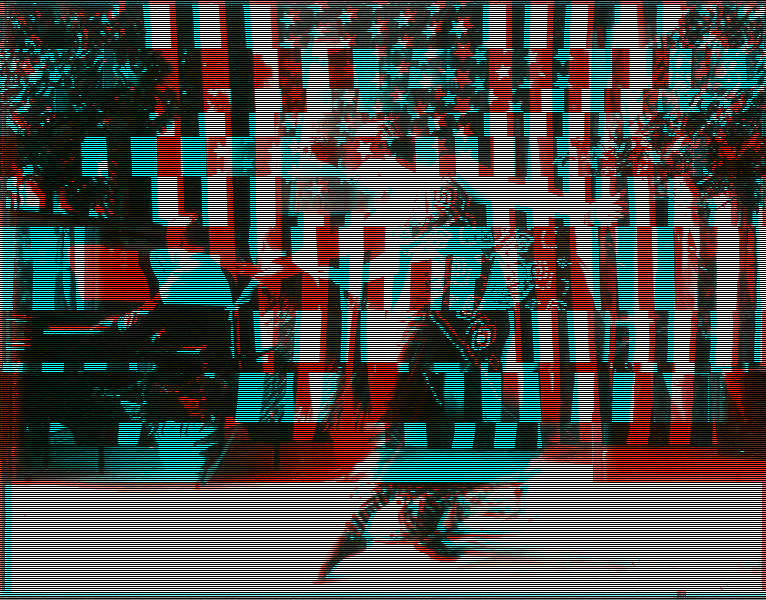
Image from https://www.legacyrussell.com/GLITCHFEMINISM
In a society that conditions the public to find discomfort or outright fear in the errors and malfunctions of our socio-cultural mechanics—illicitly and implicitly encouraging an ethos of “Don’t rock the boat!”—a “glitch” becomes an apt metonym. Glitch Feminism, however, embraces the causality of “error,” and turns the gloomy implication of glitch on its ear by acknowledging that an error in a social system that has already been disturbed by economic, racial, social, sexual, and cultural stratification and the imperialist wrecking-ball of globalization—processes that continue to enact violence on all bodies—may not, in fact, be an error at all, but rather a much-needed erratum. This glitch is a correction to the “machine”, and, in turn, a positive departure. […] We want to claim for ourselves permanent seats at the table, an empowered means of demarcating space that can be possessed by us in entirety, a veritable “room of [our] own” that, despite the strides made via feminist political action, has yet to truly belong to us.
2012, Legacy Russell, The Society Pages, December 10, 2012, https://thesocietypages.org/cyborgology/2012/12/10/digital-dualism-and-the-glitch-feminism-manifesto/
https://www.legacyrussell.com/GLITCHFEMINISM

Image from https://www.legacyrussell.com/GLITCHFEMINISM
(394)
2012
Pechblenda
Klau Kinky, Magnett, Paula Pin
Somos putones geeks,
cyborg zorras.
Devoramos Haraway y Asimov,
Preciado y manuales de Python,
Itziar Ziga y Neil Sthepenson,
Margulis y Despentes,
hackmeetings y jornadas transfeministas,
electronica DIY y bricolaje sexual;
absorbemos pdfs sobre teoría de la electrónica
escuchando psicofonías del entorno;
leemos y diseñamos circuitos,
y experimentamos con ellos en nuestros cuerpos.
Chillamos noise y akelarres cyborgs,
soldadura y alquimia;
escupimos performances e instalamos gnu-linux,
frikeamos reciclando y reparando hardware en tetas.
We are geek whores,
cyborg bitches.
We devour Haraway and Asimov,
Preciado (x) and Python manuals,
Itziar Ziga and Neil Stephenson,
Margulis and Despentes,
hackmeetings and transfeminist (x) workshps,
DIY electronics [page "Hackerspaces and DIYbio in Asia: connecting science and community with open data, kits and protocols" not found] and sexual bricolage ;
we absorb PDFs of electronics theory y listen to psicofonias from around :
we read and design circuits,
and experiment with them in our bodies.*
We scream noise and cyborg covens,
soldering and alchemy,
we spit out performances and install gnu-linux,
we love recycling and repairing with our breasts bared.*
2012, Klau Chinche (Klau Kinky), Magnett, and Paula Pin, https://pechblenda.hotglue.me/, excerpts from https://pechblenda.hotglue.me/?transhackfeminismo
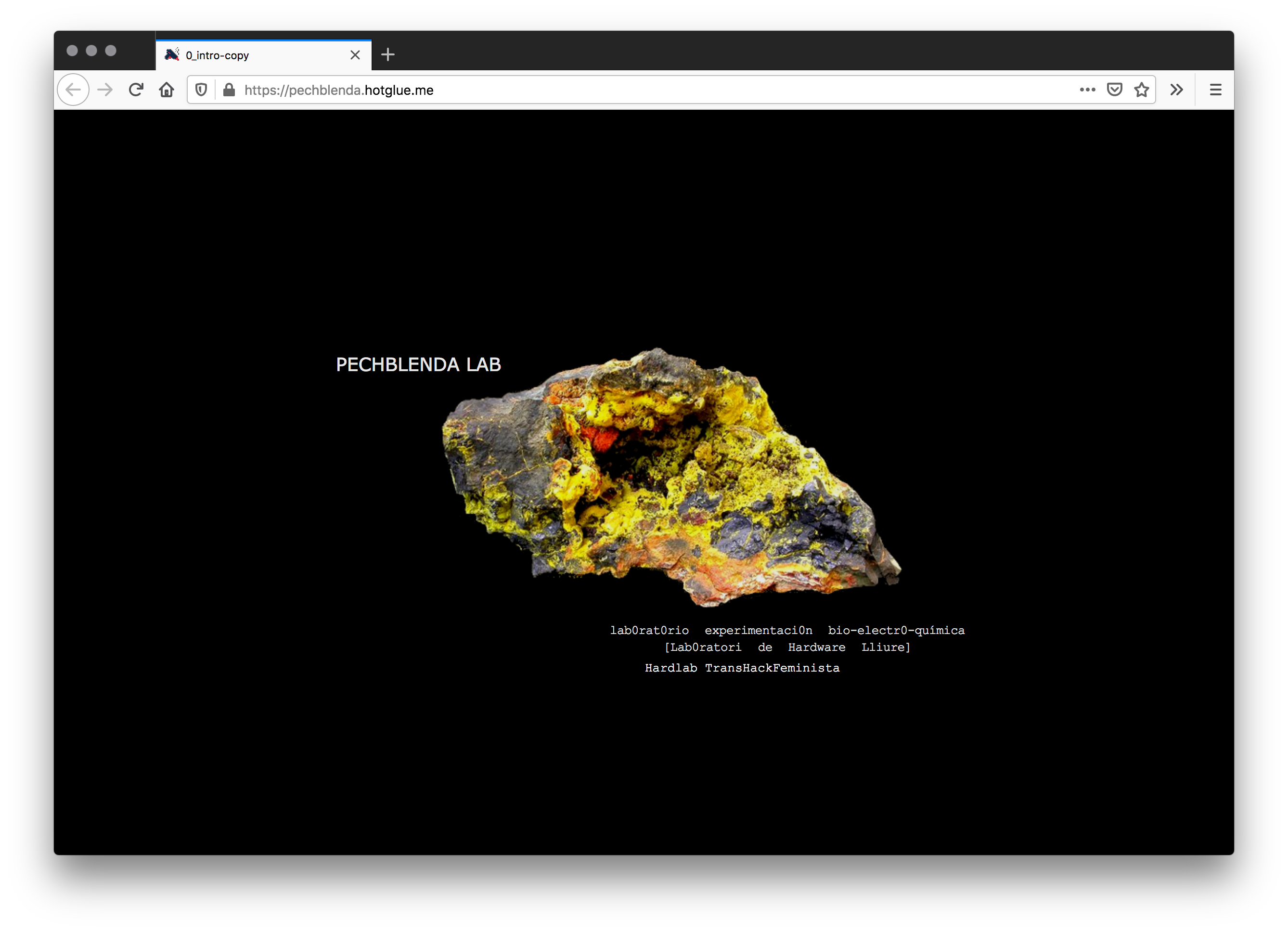
Screenshot, 2020, Firefox v76.0.1 on Mac OS 10.13.3; https://pechblenda.hotglue.me/

Artifact from https://pechblenda.hotglue.me/
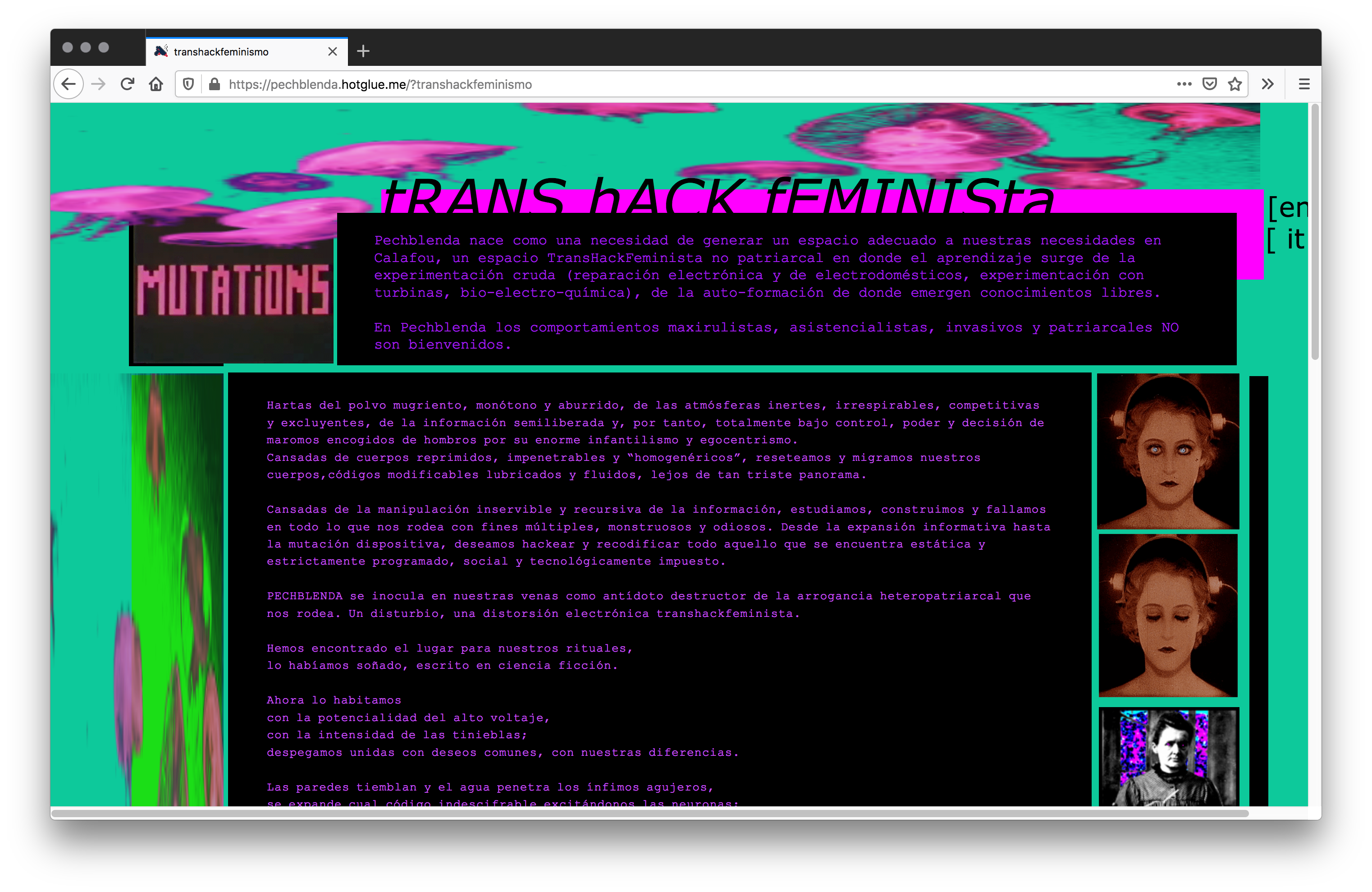
Screenshot, 2020, Firefox v76.0.1 on Mac OS 10.13.3; https://pechblenda.hotglue.me/?transhackfeminismo

Artifact from https://pechblenda.hotglue.me/?transhackfeminismo

Artifact from https://pechblenda.hotglue.me/?transhackfeminismo
Somos putones geeks,
cyborg zorras.
Devoramos Haraway y Asimov,
Preciado y manuales de Python,
Itziar Ziga y Neil Sthepenson,
Margulis y Despentes,
hackmeetings y jornadas transfeministas,
electronica DIY y bricolaje sexual;
absorbemos pdfs sobre teoría de la electrónica
escuchando psicofonías del entorno;
leemos y diseñamos circuitos,
y experimentamos con ellos en nuestros cuerpos.
Chillamos noise y akelarres cyborgs,
soldadura y alquimia;
escupimos performances e instalamos gnu-linux,
frikeamos reciclando y reparando hardware en tetas.
We are geek whores,
cyborg bitches.
We devour Haraway and Asimov,
Preciado (x) and Python manuals,
Itziar Ziga and Neil Stephenson,
Margulis and Despentes,
hackmeetings and transfeminist (x) workshps,
DIY electronics [page "Hackerspaces and DIYbio in Asia: connecting science and community with open data, kits and protocols" not found] and sexual bricolage ;
we absorb PDFs of electronics theory y listen to psicofonias from around :
we read and design circuits,
and experiment with them in our bodies.*
We scream noise and cyborg covens,
soldering and alchemy,
we spit out performances and install gnu-linux,
we love recycling and repairing with our breasts bared.*
2012, Klau Chinche (Klau Kinky), Magnett, and Paula Pin, https://pechblenda.hotglue.me/, excerpts from https://pechblenda.hotglue.me/?transhackfeminismo
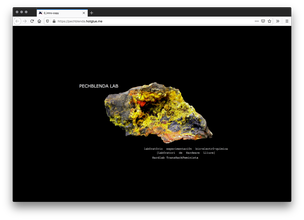
Screenshot, 2020, Firefox v76.0.1 on Mac OS 10.13.3; https://pechblenda.hotglue.me/

Artifact from https://pechblenda.hotglue.me/
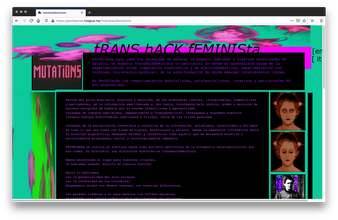
Screenshot, 2020, Firefox v76.0.1 on Mac OS 10.13.3; https://pechblenda.hotglue.me/?transhackfeminismo
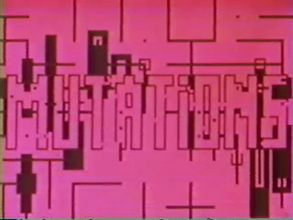
Artifact from https://pechblenda.hotglue.me/?transhackfeminismo

Artifact from https://pechblenda.hotglue.me/?transhackfeminismo
(395)
2012–
2020
HOLAAfrica (HOLAA!)
Looking online, we realised there was very little for the African queer woman and her experience and so a Hub of Loving Action in Africa (HOLAA!) was born. What started as a small blog written by a few friends has grown into something bigger and more beautiful. More people, more conversations, more happenings. Now it’s a hub that houses knowledge that goes into all realms of sex and sexuality as it pertains to all aspects of African sex and sexuality. This is a space where women and gender non-conforming people of all sexualities can come together and engage with each other and the world. HOLAA! does its thing through workshops, dialogues, archiving, digital conversations, knowledge production, partnerships and awareness building. We want to have those chats about sex, sexuality and the African experience. Also, on every day ending in “day,” we spread love and happiness.
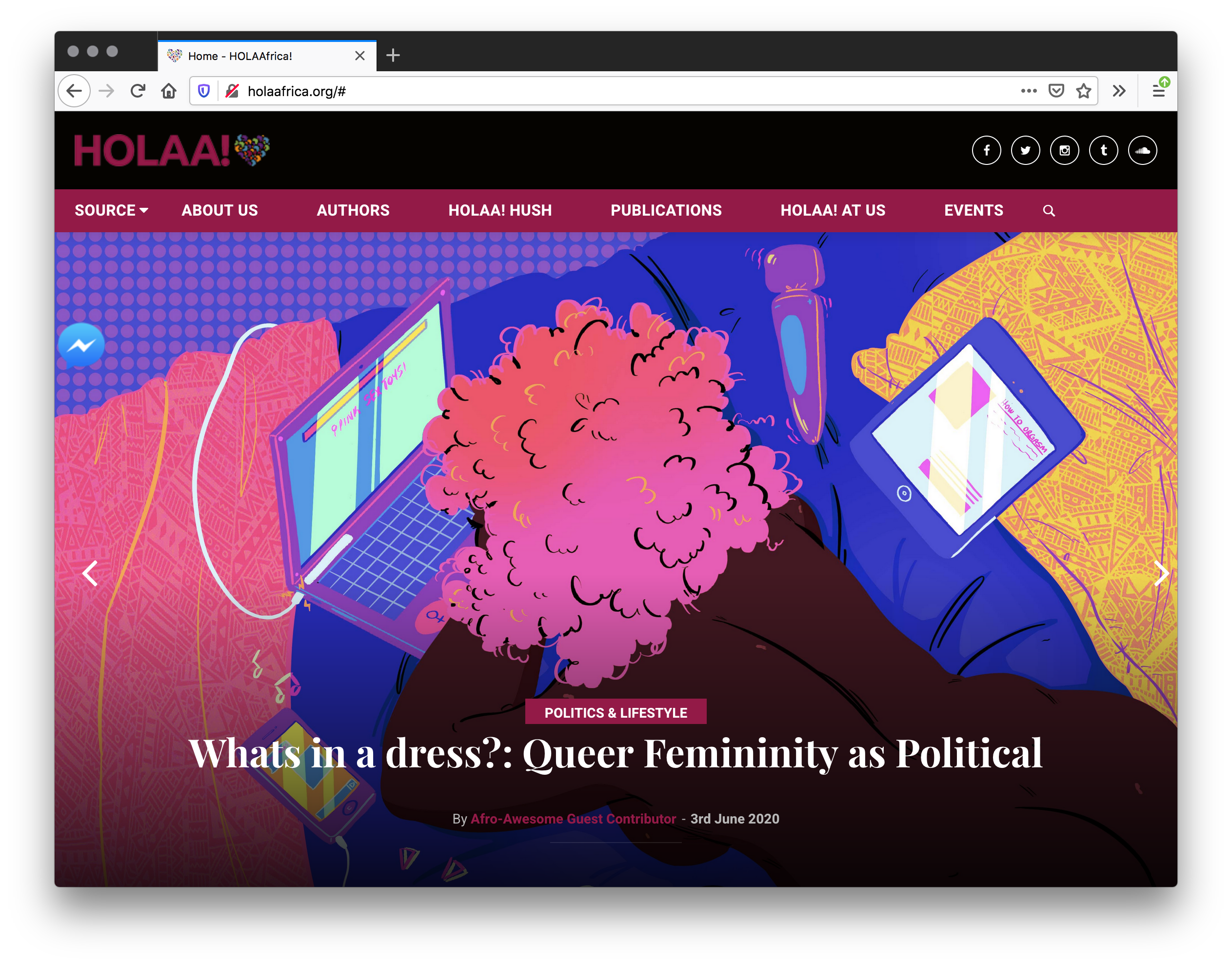
Screenshot, 2020, Firefox v76.0.1 on Mac OS 10.13.3; http://holaafrica.org/
Looking online, we realised there was very little for the African queer woman and her experience and so a Hub of Loving Action in Africa (HOLAA!) was born. What started as a small blog written by a few friends has grown into something bigger and more beautiful. More people, more conversations, more happenings. Now it’s a hub that houses knowledge that goes into all realms of sex and sexuality as it pertains to all aspects of African sex and sexuality. This is a space where women and gender non-conforming people of all sexualities can come together and engage with each other and the world. HOLAA! does its thing through workshops, dialogues, archiving, digital conversations, knowledge production, partnerships and awareness building. We want to have those chats about sex, sexuality and the African experience. Also, on every day ending in “day,” we spread love and happiness.
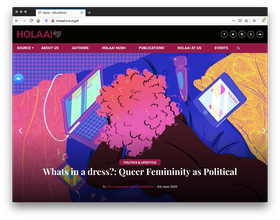
Screenshot, 2020, Firefox v76.0.1 on Mac OS 10.13.3; http://holaafrica.org/
(396)
2012
Hiperderecho
Pedro Muñoz del Río, Alejandra Alayza, Jill Khoury, Miguel Sánchez Flores, y Rafael Salazar Gamarra
Somos una organización civil peruana sin fines de lucro dedicada a investigar, facilitar el entendimiento público y promover el respeto de los derechos y libertades en entornos digitales. Hiperderecho existe gracias al trabajo de un grupo de jóvenes abogados, comunicadores, diseñadores y geeks en general. […] Usamos herramientas legales para defender los derechos de los peruanos en entornos digitales. Activamente buscamos casos de interés público de afectación a un derecho para poder denunciarlo ante las autoridades. Buscamos difundir la capacidad liberadora de la tecnología y desarrollar o potenciar espacios digitales para que todos los peruanos ejerzan sus derechos y refuercen su ciudadanía. Creemos que la tecnología es una herramienta poderosa para el ejercicio de Derechos. Desarrollamos aplicaciones web y sistemas que ayuden a los peruanos a ejercer sus derechos más fácilmente y a monitorear lo que hacen sus autoridades.
We are a Peruvian non-profit civil organization dedicated to investigating, facilitating public understanding and promoting respect for rights and freedoms in digital environments. Hiperderecho exists thanks to the work of a group of young lawyers, communicators, designers and geeks in general. […] We use legal tools to defend the rights of Peruvians in digital environments. We actively seek public interest cases involving a right to be able to report it to the authorities. We seek to spread the liberating capacity of technology and develop or enhance digital spaces for all Peruvians to exercise their rights and strengthen their citizenship. We believe that technology is a powerful tool for the exercise of Rights. We develop web applications and systems that help Peruvians to exercise their rights more easily and to monitor what their authorities do.
2012, Pedro Muñoz del Río, Alejandra Alayza, Jill Khoury, Miguel Sánchez Flores, and Rafael Salazar Gamarra, https://hiperderecho.org/
Peru
Somos una organización civil peruana sin fines de lucro dedicada a investigar, facilitar el entendimiento público y promover el respeto de los derechos y libertades en entornos digitales. Hiperderecho existe gracias al trabajo de un grupo de jóvenes abogados, comunicadores, diseñadores y geeks en general. […] Usamos herramientas legales para defender los derechos de los peruanos en entornos digitales. Activamente buscamos casos de interés público de afectación a un derecho para poder denunciarlo ante las autoridades. Buscamos difundir la capacidad liberadora de la tecnología y desarrollar o potenciar espacios digitales para que todos los peruanos ejerzan sus derechos y refuercen su ciudadanía. Creemos que la tecnología es una herramienta poderosa para el ejercicio de Derechos. Desarrollamos aplicaciones web y sistemas que ayuden a los peruanos a ejercer sus derechos más fácilmente y a monitorear lo que hacen sus autoridades.
We are a Peruvian non-profit civil organization dedicated to investigating, facilitating public understanding and promoting respect for rights and freedoms in digital environments. Hiperderecho exists thanks to the work of a group of young lawyers, communicators, designers and geeks in general. […] We use legal tools to defend the rights of Peruvians in digital environments. We actively seek public interest cases involving a right to be able to report it to the authorities. We seek to spread the liberating capacity of technology and develop or enhance digital spaces for all Peruvians to exercise their rights and strengthen their citizenship. We believe that technology is a powerful tool for the exercise of Rights. We develop web applications and systems that help Peruvians to exercise their rights more easily and to monitor what their authorities do.
2012, Pedro Muñoz del Río, Alejandra Alayza, Jill Khoury, Miguel Sánchez Flores, and Rafael Salazar Gamarra, https://hiperderecho.org/
Peru
(397)
2012
TEDIC
Maricarmen Sequera, Tomás Cardozo, Alejandro Valdez, Enrique Gimenez, Pablo Castillo, Vivian Marandari
Defendemos los derechos digitales (Derechos humanos en Internet) [en Paraguay]: Buscamos el cumplimiento pleno de los derechos civiles en Internet. Investigamos, difundimos información y capacitamos en temas de privacidad, datos personales, ciberseguridad: cuidados digitales, libertad de expresión y manifestación, neutralidad en la red, derechos de autor, inteligencia artificial, biometría, entre otros con un enfoque transversal de género. Desarrollamos tecnología cívica abierta: Promovemos el uso y desarrollo de software y hardware libre, diseño abierto y datos abiertos.
We defend digital rights (Human Rights on the Internet) [in Paraguay]: We seek full compliance with civil rights on the Internet. We investigate, disseminate information and train on issues of privacy, personal data, cybersecurity: digital care, freedom of expression and manifestation, net neutrality, copyright, artificial intelligence, biometrics, among others with a cross-gender approach. We develop open civic technology: We promote the use and development of free software and hardware, open design and open data.
2012, Maricarmen Sequera, Tomás Cardozo, Alejandro Valdez, Enrique Gimenez, Pablo Castillo, and Vivian Marandari, https://www.tedic.org/
Paraguay
Defendemos los derechos digitales (Derechos humanos en Internet) [en Paraguay]: Buscamos el cumplimiento pleno de los derechos civiles en Internet. Investigamos, difundimos información y capacitamos en temas de privacidad, datos personales, ciberseguridad: cuidados digitales, libertad de expresión y manifestación, neutralidad en la red, derechos de autor, inteligencia artificial, biometría, entre otros con un enfoque transversal de género. Desarrollamos tecnología cívica abierta: Promovemos el uso y desarrollo de software y hardware libre, diseño abierto y datos abiertos.
We defend digital rights (Human Rights on the Internet) [in Paraguay]: We seek full compliance with civil rights on the Internet. We investigate, disseminate information and train on issues of privacy, personal data, cybersecurity: digital care, freedom of expression and manifestation, net neutrality, copyright, artificial intelligence, biometrics, among others with a cross-gender approach. We develop open civic technology: We promote the use and development of free software and hardware, open design and open data.
2012, Maricarmen Sequera, Tomás Cardozo, Alejandro Valdez, Enrique Gimenez, Pablo Castillo, and Vivian Marandari, https://www.tedic.org/
Paraguay
(398)
2012
Luchadoras [Fighters]
Lulú V. Barrera
¿Qué queremos? Que las mujeres, jóvenes y niñas vivan con gozo y libertad tanto los espacios físicos como digitales, conscientes de su fuerza y potencial personal y colectivo. Nuestra misión es impulsar procesos de transformación política personal y colectiva a través de la creación y difusión de historias, la apropiación las TIC’s (tecnologías de la información y comunicación), la construcción de una internet libre de violencias y la creación de espacios de encuentro que reivindican y dignifican los saberes, la fuerza y el poder de las mujeres.
What do we want? That women, young people and girls live with joy and freedom both in physical and digital spaces, aware of their strength and personal and collective potential. Our mission is to promote processes of personal and collective political transformation through the creation and dissemination of stories, the appropriation of ICT’s (information and communication technologies), the construction of an internet free of violence and the creation of meeting spaces that claim and dignify the knowledge, strength and power of women.
2012, Lulú V. Barrera, https://luchadoras.mx/; referred by Paola Ricaurte Quijano
Mexico

Luchadoras logo
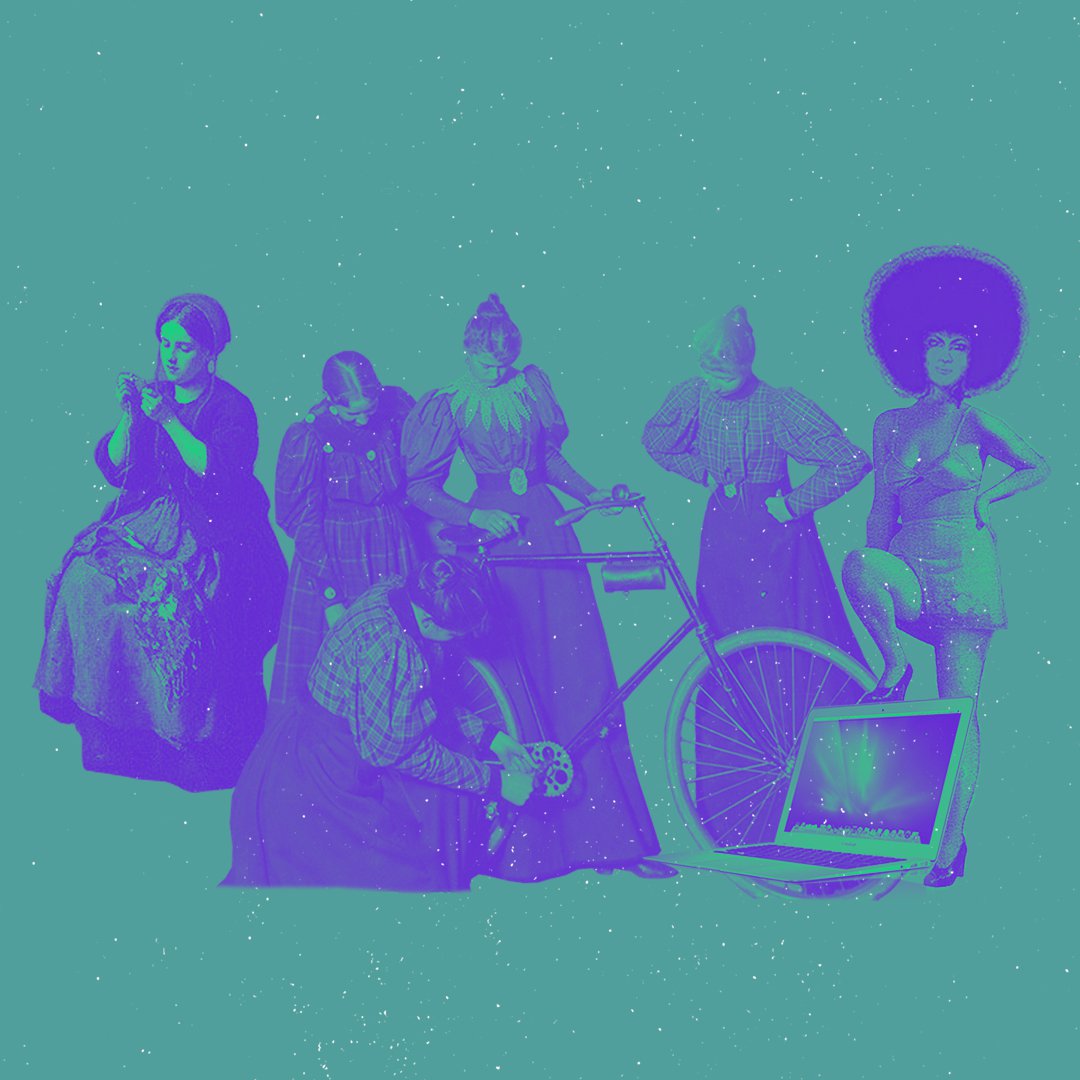
Technolovers image, https://luchadoras.mx/tecnolovers/
¿Qué queremos? Que las mujeres, jóvenes y niñas vivan con gozo y libertad tanto los espacios físicos como digitales, conscientes de su fuerza y potencial personal y colectivo. Nuestra misión es impulsar procesos de transformación política personal y colectiva a través de la creación y difusión de historias, la apropiación las TIC’s (tecnologías de la información y comunicación), la construcción de una internet libre de violencias y la creación de espacios de encuentro que reivindican y dignifican los saberes, la fuerza y el poder de las mujeres.
What do we want? That women, young people and girls live with joy and freedom both in physical and digital spaces, aware of their strength and personal and collective potential. Our mission is to promote processes of personal and collective political transformation through the creation and dissemination of stories, the appropriation of ICT’s (information and communication technologies), the construction of an internet free of violence and the creation of meeting spaces that claim and dignify the knowledge, strength and power of women.
2012, Lulú V. Barrera, https://luchadoras.mx/; referred by Paola Ricaurte Quijano
Mexico

Luchadoras logo

Technolovers image, https://luchadoras.mx/tecnolovers/
(399)
2012
Asikana Network
Ella Mbewe, Chisenga Muyota, Regina Mtonga
We exist to create a community of confident and capable women through technology. Asikana Network is an organization that seeks to increase the meaningful participation of women and girls in technology. We provide free training in marketable ICT skills, exposure to emerging technologies, mentorship, networking and career progression opportunities. We work primarily with three target groups—girls in high school, in college and young professionals.
2012, Ella Mbewe, Chisenga Muyoya, and Regina Mtonga, https://web.archive.org/web/20200511135010/https://asikananetwork.org/
Africa
We exist to create a community of confident and capable women through technology. Asikana Network is an organization that seeks to increase the meaningful participation of women and girls in technology. We provide free training in marketable ICT skills, exposure to emerging technologies, mentorship, networking and career progression opportunities. We work primarily with three target groups—girls in high school, in college and young professionals.
2012, Ella Mbewe, Chisenga Muyoya, and Regina Mtonga, https://web.archive.org/web/20200511135010/https://asikananetwork.org/
Africa
(400)
2012
Hackerspaces and DIYbio in Asia: Connecting Science and Community with Open Data, Kits and Protocols
Denisa Kera
From hyper-modern Singapore and the post-apocalyptic Tokyo to the booming but still developing Yogyakarta we can notice the same enthusiasm for DIY and maker activities, low tech solutions and citizen science experiments. Should we label these citizen science activities as popularization and dissemination of professional knowledge or as a special case of applied science? How should we evaluate the emphasis on startups and the entrepreneurial ethos behind some of these projects, and its search for commercialization of various technologies similar to the goals of any start up incubator? How are we to connect these mundane, technical and entrepreneurial goals with the ongoing art and design activities? Are we witnessing a tension between the US and EU models of independently run, co-working spaces for geeks, designers and entrepreneurs? It is exactly this tension that makes such experiments in social and technological innovation so dynamic.
2012, Denisa Kera, in “Bio/Hardware Hacking,” eds. Alessandro Delfanti and Johan Söderberg, special issue, Journal of Peer Production 2 (June 2012): pp. 1–8; excerpt p. 3
http://peerproduction.net/issues/issue-2/peer-reviewed-papers/diybio-in-asia/
Indonesia, Singapore, Japan
From hyper-modern Singapore and the post-apocalyptic Tokyo to the booming but still developing Yogyakarta we can notice the same enthusiasm for DIY and maker activities, low tech solutions and citizen science experiments. Should we label these citizen science activities as popularization and dissemination of professional knowledge or as a special case of applied science? How should we evaluate the emphasis on startups and the entrepreneurial ethos behind some of these projects, and its search for commercialization of various technologies similar to the goals of any start up incubator? How are we to connect these mundane, technical and entrepreneurial goals with the ongoing art and design activities? Are we witnessing a tension between the US and EU models of independently run, co-working spaces for geeks, designers and entrepreneurs? It is exactly this tension that makes such experiments in social and technological innovation so dynamic.
2012, Denisa Kera, in “Bio/Hardware Hacking,” eds. Alessandro Delfanti and Johan Söderberg, special issue, Journal of Peer Production 2 (June 2012): pp. 1–8; excerpt p. 3
http://peerproduction.net/issues/issue-2/peer-reviewed-papers/diybio-in-asia/
Indonesia, Singapore, Japan
(401)
2012
Walking the Clouds: An Anthology of Indigenous Science Fiction
Grace L. Dillon
Walking the Clouds opens up [science fiction] to reveal Native presence. It suggests that Indigenous sf is not so new—just overlooked, although largely accompanied by an emerging movement—and advocates that Indigenous authors should write more of it. We should do this as a way of positioning ourselves in a genre associated almost exclusively with “the increasing significance of the future to Western technocultural consciousness,” as the editors of the popular Wesleyan Anthology of Science Fiction (2010) view the field. […] The stories offered here are thought experiments that confront “Indianness” in a genre that emerged in the mid-nineteenth-century context of evolutionary theory and anthropology profoundly intertwined with colonial ideology, whose major interest was coming to grips with—or negating—the implications of these scientific mixes of “competition, adaptation, race, and destiny.” […] Writers of Indigenous futurisms sometimes intentionally experiment with, sometimes intentionally dislodge, sometimes merely accompany, but invariably change the perimeters of sf.
2012, Grace L. Dillon, ed. (Tucson, AZ: University of Arizona Press, 2012); excerpt from Grace L. Dillon, introduction to Dillon, Walking the Clouds, pp. 2–3
https://uapress.arizona.edu/book/walking-the-clouds
Walking the Clouds opens up [science fiction] to reveal Native presence. It suggests that Indigenous sf is not so new—just overlooked, although largely accompanied by an emerging movement—and advocates that Indigenous authors should write more of it. We should do this as a way of positioning ourselves in a genre associated almost exclusively with “the increasing significance of the future to Western technocultural consciousness,” as the editors of the popular Wesleyan Anthology of Science Fiction (2010) view the field. […] The stories offered here are thought experiments that confront “Indianness” in a genre that emerged in the mid-nineteenth-century context of evolutionary theory and anthropology profoundly intertwined with colonial ideology, whose major interest was coming to grips with—or negating—the implications of these scientific mixes of “competition, adaptation, race, and destiny.” […] Writers of Indigenous futurisms sometimes intentionally experiment with, sometimes intentionally dislodge, sometimes merely accompany, but invariably change the perimeters of sf.
2012, Grace L. Dillon, ed. (Tucson, AZ: University of Arizona Press, 2012); excerpt from Grace L. Dillon, introduction to Dillon, Walking the Clouds, pp. 2–3
https://uapress.arizona.edu/book/walking-the-clouds
(402)
2012–
2016
Council on Gender Sensitivity and Behavioral Awareness in World of Warcraft
Angela Washko
What’s especially strange about the sexism present in WoW is that players not only come from diverse social, economic and racial backgrounds but are also, according to census data taken by the Daedalus Project, 28 years old on average. (“It’s just a bunch of 14-year-old boys trolling you” won’t cut it as a defense.) If #gamergate supporters need to respect this diversity, many non-gamers also need to accept that the dichotomy between the physical (real) and the virtual (fake) is dated; in game spaces, individuals perform their identities in ways that are governed by the same social relations that are operative in a classroom or park, though with fewer inhibitions. That’s why—instead of either continuing on quests to kill more baddies or declaring the game a trivial, reactionary space where sexists thrive and abandoning it—I embarked on a quest to facilitate conversations about discriminatory language in WoW’s public discussion channels.
2012, Angela Washko; excerpt from Angela Washko, “Why Talk Feminism in World of Warcraft,” Creative Time Reports, November 20, 2014, https://creativetimereports.org/2014/11/20/angela-washko-feminism-world-of-warcraft-gamergate/
Angela Washko

Angela Washko, 2012, image from https://creativetimereports.org/2014/11/20/angela-washko-feminism-world-of-warcraft-gamergate/
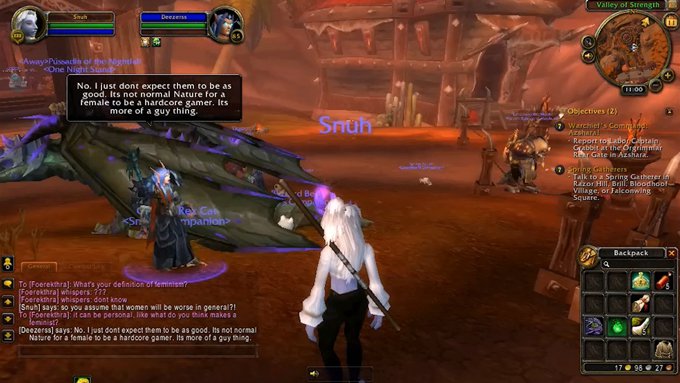
Angela Washko, 2012, image from https://creativetimereports.org/2014/11/20/angela-washko-feminism-world-of-warcraft-gamergate/
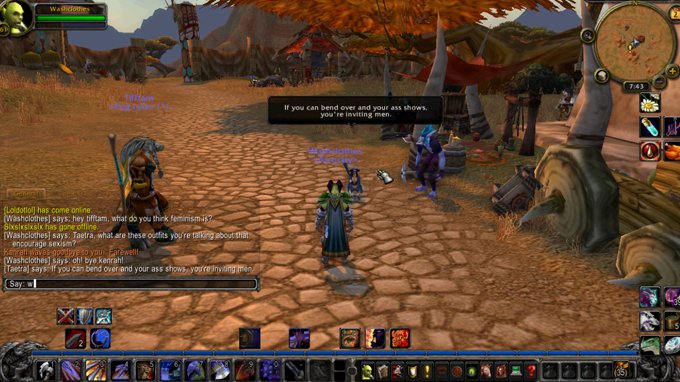
Angela Washko, 2012, image from https://creativetimereports.org/2014/11/20/angela-washko-feminism-world-of-warcraft-gamergate/
What’s especially strange about the sexism present in WoW is that players not only come from diverse social, economic and racial backgrounds but are also, according to census data taken by the Daedalus Project, 28 years old on average. (“It’s just a bunch of 14-year-old boys trolling you” won’t cut it as a defense.) If #gamergate supporters need to respect this diversity, many non-gamers also need to accept that the dichotomy between the physical (real) and the virtual (fake) is dated; in game spaces, individuals perform their identities in ways that are governed by the same social relations that are operative in a classroom or park, though with fewer inhibitions. That’s why—instead of either continuing on quests to kill more baddies or declaring the game a trivial, reactionary space where sexists thrive and abandoning it—I embarked on a quest to facilitate conversations about discriminatory language in WoW’s public discussion channels.
2012, Angela Washko; excerpt from Angela Washko, “Why Talk Feminism in World of Warcraft,” Creative Time Reports, November 20, 2014, https://creativetimereports.org/2014/11/20/angela-washko-feminism-world-of-warcraft-gamergate/
Angela Washko
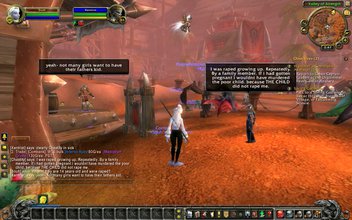
Angela Washko, 2012, image from https://creativetimereports.org/2014/11/20/angela-washko-feminism-world-of-warcraft-gamergate/
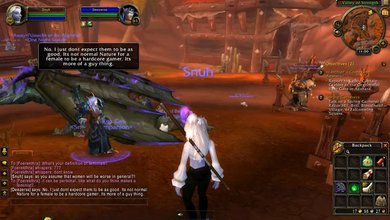
Angela Washko, 2012, image from https://creativetimereports.org/2014/11/20/angela-washko-feminism-world-of-warcraft-gamergate/
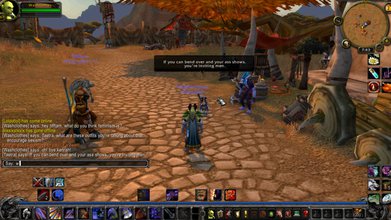
Angela Washko, 2012, image from https://creativetimereports.org/2014/11/20/angela-washko-feminism-world-of-warcraft-gamergate/
(403)
2012
Género, tecnología e internet en Latinoamérica y vigencias del formato digital [Gender, Technology and the Internet in Latin America and the Validity of the Digital Format]
Tina Escaja (Alm@ Pérez)
La máquina nos libera. El ordenador desordena, des-computa, descentraliza. No hay centro dicen, no hay modo de establecer un parámetro sagrado y único. Niega la autoridad, el patriarcado niega. Niega el autor. El enredo de la red es femenino, dicen. Su estructura lo es, digo yo. La mujer tejido, la mujer comunicadora, en extremo estructurada computa. No tanto esencialismos intuitivos como interacciones y comunicación. Mother tongue. Lengua materna. Oráculo, emperatriz. Educadora y poeta. Meticulosa economista del hogar y las cosas, sus gentes. Artista pertinaz. La mujer no desaparece en la red. Se instala y elabora, teje. Pero se mantienen la utopías de la liberación por la máquina. Esa máquina que en su momento lava y plancha y cocina por sí sola, dicen, libera. El ordenador es igualitario, representa el margen, por presunta invisibilidad quizás. El cuerpo desaparece. Se destituye. Al tiempo que proliferan identidades asumidas o intercambiadas en charlas y foros, en revistas cibernéticas. Al tiempo que hacen torpedo propuestas pornográficas y sus poses, los desnudos a voces que te ofrecen girls. Pero el cuerpo no está. Se libera, dicen. El cuerpo se transforma en cyborg. […] ¿Mejor una cyborg que una diosa?
The machine frees us. The computer messes up, de-computes, decentralizes. There is no center, they say, there is no way to establish a sacred and unique parameter. Denies authority, denies patriarchy. The author denies. The entanglement of the network is female, they say. Its structure is, I say. The weaving woman, the communicator woman, is extremely structured. Not so much intuitive essentialisms as interactions and communication. Mother tongue. Mother tongue. Oracle, Empress. Educator and poet. Meticulous economist of the home and things, its people. Stubborn artist. The woman does not disappear in the network. She settles and elaborates, weaves. But the utopias of liberation by the machine remain. That machine that once washes and irons and cooks by itself, they say, liberates. The computer is egalitarian, it represents the margin, perhaps due to presumed invisibility. The body disappears. It is dismissed. At the same time, the identities assumed or exchanged proliferate in talks and forums, in cybernetic magazines. At the same time they torpedo pornographic proposals and their poses, the naked nudes that girls offer you. But the body is not there. It breaks free, they say. The body transforms into a cyborg. […] Better a cyborg than a goddess?
2012, Tina Escaja (Alm@ Pérez), “FEMINISMO DESCOLONIAL,” ed. Gladys Ilarregui, special issue, Letras Femeninas 38, no. 1 (Verano 2012): pp. 147–165; excerpt p. 147–148; referred by Tina Escaja (Alm@ Pérez)
https://www.jstor.org/stable/23345562
La máquina nos libera. El ordenador desordena, des-computa, descentraliza. No hay centro dicen, no hay modo de establecer un parámetro sagrado y único. Niega la autoridad, el patriarcado niega. Niega el autor. El enredo de la red es femenino, dicen. Su estructura lo es, digo yo. La mujer tejido, la mujer comunicadora, en extremo estructurada computa. No tanto esencialismos intuitivos como interacciones y comunicación. Mother tongue. Lengua materna. Oráculo, emperatriz. Educadora y poeta. Meticulosa economista del hogar y las cosas, sus gentes. Artista pertinaz. La mujer no desaparece en la red. Se instala y elabora, teje. Pero se mantienen la utopías de la liberación por la máquina. Esa máquina que en su momento lava y plancha y cocina por sí sola, dicen, libera. El ordenador es igualitario, representa el margen, por presunta invisibilidad quizás. El cuerpo desaparece. Se destituye. Al tiempo que proliferan identidades asumidas o intercambiadas en charlas y foros, en revistas cibernéticas. Al tiempo que hacen torpedo propuestas pornográficas y sus poses, los desnudos a voces que te ofrecen girls. Pero el cuerpo no está. Se libera, dicen. El cuerpo se transforma en cyborg. […] ¿Mejor una cyborg que una diosa?
The machine frees us. The computer messes up, de-computes, decentralizes. There is no center, they say, there is no way to establish a sacred and unique parameter. Denies authority, denies patriarchy. The author denies. The entanglement of the network is female, they say. Its structure is, I say. The weaving woman, the communicator woman, is extremely structured. Not so much intuitive essentialisms as interactions and communication. Mother tongue. Mother tongue. Oracle, Empress. Educator and poet. Meticulous economist of the home and things, its people. Stubborn artist. The woman does not disappear in the network. She settles and elaborates, weaves. But the utopias of liberation by the machine remain. That machine that once washes and irons and cooks by itself, they say, liberates. The computer is egalitarian, it represents the margin, perhaps due to presumed invisibility. The body disappears. It is dismissed. At the same time, the identities assumed or exchanged proliferate in talks and forums, in cybernetic magazines. At the same time they torpedo pornographic proposals and their poses, the naked nudes that girls offer you. But the body is not there. It breaks free, they say. The body transforms into a cyborg. […] Better a cyborg than a goddess?
2012, Tina Escaja (Alm@ Pérez), “FEMINISMO DESCOLONIAL,” ed. Gladys Ilarregui, special issue, Letras Femeninas 38, no. 1 (Verano 2012): pp. 147–165; excerpt p. 147–148; referred by Tina Escaja (Alm@ Pérez)
https://www.jstor.org/stable/23345562
(404)
2012
The women who never went into space
Francis Hunger
Francis Hunger‘s radio play The Woman who never flew into Space reflects on a forgotten episode of the Soviet space programme: Although (the fictive) Irina Evgenina Shukova obviously appears to be better prepared and qualified for the first flight of a female cosmonaut in a Vostok spacecraft, Valentina Tereshkova is given preference for this historic mission in 1963. Applying methods of speculative research, Hunger deals with the possible reasons for this decision (based on historical facts) and the significance that human spaceflight had for the technological development of the Soviet Union.
The story is inspired by the historical figure of Valentina Ponomaryeva, who was promised a space flight by the leaders of the Soviet Union. Her mission, however, was cancelled, after the moon became the new goal for the competing space powers of the US and the USSR. She is the woman who never flew into space.
2012, Francis Hunger, http://www.irmielin.org/the-women-who-never-went-into-space/, excerpt from project description by Fabian Saavedra-Lara; submitted by Francis Hunger.
Francis Hunger‘s radio play The Woman who never flew into Space reflects on a forgotten episode of the Soviet space programme: Although (the fictive) Irina Evgenina Shukova obviously appears to be better prepared and qualified for the first flight of a female cosmonaut in a Vostok spacecraft, Valentina Tereshkova is given preference for this historic mission in 1963. Applying methods of speculative research, Hunger deals with the possible reasons for this decision (based on historical facts) and the significance that human spaceflight had for the technological development of the Soviet Union.
The story is inspired by the historical figure of Valentina Ponomaryeva, who was promised a space flight by the leaders of the Soviet Union. Her mission, however, was cancelled, after the moon became the new goal for the competing space powers of the US and the USSR. She is the woman who never flew into space.
2012, Francis Hunger, http://www.irmielin.org/the-women-who-never-went-into-space/, excerpt from project description by Fabian Saavedra-Lara; submitted by Francis Hunger.
(405)
2013
Testo Junkie: Sex, Drugs, and Biopolitics in the Pharmacopornographic Era
Paul B. Preciado
This book is not a memoir. This book is a testosterone-based, voluntary intoxication protocol, which concerns the body and effects of BP. A body-essay. Fiction, actually. If things must be pushed to the extreme, this is a somato-political fiction, a theory of the self, or self-theory. During the time period covered by this essay, two external transformations follow on each other in the context of the experimental body, the impact of which couldn’t be calculated beforehand and cannot be taken into account as a function of the study; but it created the limits around which writing was incorporated. […] This is a record of physiological and political micromutations provoked in BP’s body by testosterone, as well as the theoretical and physical changes incited in that body by loss, desire, elation, failure, or renouncement. I’m not interested in my emotions insomuch as their being mine, belonging only, uniquely, to me. […] Some will read this text as a manual for a kind of gender bioterrorism on a molecular scale. Others will see in it a single point in a cartography of extinction.
2013, Paul B. Preciado (New York: The Feminist Press, 2013); excerpt p. 11–12
Editor’s Note: This book was originally published in Spanish as Testo Yonqui by Espana Calpe in Madrid in 2008, followed by a French translation as Testo Junkie by Editions Grasset & Fasquelle in Paris in 2008. This English-language edition is translated from the French version. —MS
https://www.feministpress.org/books-n-z/testo-junkie https://archive.org/stream/PreciadoTestoJunkieSexDrugsAndBiopoliticsInThePharmacopornographicEra/Preciado+-+Testo+Junkie+-+Sex%2C+Drugs%2C+and+Biopolitics+in+the+Pharmacopornographic+Era_djvu.txt
This book is not a memoir. This book is a testosterone-based, voluntary intoxication protocol, which concerns the body and effects of BP. A body-essay. Fiction, actually. If things must be pushed to the extreme, this is a somato-political fiction, a theory of the self, or self-theory. During the time period covered by this essay, two external transformations follow on each other in the context of the experimental body, the impact of which couldn’t be calculated beforehand and cannot be taken into account as a function of the study; but it created the limits around which writing was incorporated. […] This is a record of physiological and political micromutations provoked in BP’s body by testosterone, as well as the theoretical and physical changes incited in that body by loss, desire, elation, failure, or renouncement. I’m not interested in my emotions insomuch as their being mine, belonging only, uniquely, to me. […] Some will read this text as a manual for a kind of gender bioterrorism on a molecular scale. Others will see in it a single point in a cartography of extinction.
2013, Paul B. Preciado (New York: The Feminist Press, 2013); excerpt p. 11–12
Editor’s Note: This book was originally published in Spanish as Testo Yonqui by Espana Calpe in Madrid in 2008, followed by a French translation as Testo Junkie by Editions Grasset & Fasquelle in Paris in 2008. This English-language edition is translated from the French version. —MS
https://www.feministpress.org/books-n-z/testo-junkie https://archive.org/stream/PreciadoTestoJunkieSexDrugsAndBiopoliticsInThePharmacopornographicEra/Preciado+-+Testo+Junkie+-+Sex%2C+Drugs%2C+and+Biopolitics+in+the+Pharmacopornographic+Era_djvu.txt
(406)
2013
Anarcha, Lucy, Betsey
Klau Kinky
Harta de la colonización corporal!!!!
NO QUIERO LLAMAR A LA GLÁNDULA QUE ME HACE EYACULAR CHORROS DE PLACER con el nombre de un TIO que dijo ‘descubrir’ una parte de mi cuerpo!
ANARCHA, fue una esclava que sufrió en su carne la experimentación sin anestesia del sádico ídolo de skene… sims
ELLA Y SÓLO ELLA puede entrar y nombrar mi carne. MEMORIA.
SU carne MI carne.
La causantes de mis chorros merecen un cuerpo a su altura.
MUERTE a la denominación patriarcal del teatro médico colonialista!
NUNCA MAS glándula de skene….
DE AHORA EN ADELANTE:
GLÁNDULA DE ANARCHA!!!!!
Sick of the body colonialism!!!!
I DON’T WANT TO CALL THE GLAND THAT MAKES ME EJACULATE RIVERS of PLEASURE with a guy’s name that says that ‘discover’ some part of my body!
ANARCHA, was a black slave that suffered in her own flesh the experimetation of the sadist idol of skene… sims
SHE, AND ONLY SHE, can name my flesh. (x) MEMORY.
HER flesh, MY flesh.
What makes me squirt deserve a body that can speak at her level.
DEAD to the patriarcal denomination of the colonialist medical theatre!
NEVER MORE skene’s gland….
FROM NOW ON: ANARCHA’S GLAND!!!!!
2013, Klau Chinche (Klau Kinky), https://anarchagland.hotglue.me/; excerpt from “decolonizar,” gLÁndula de Anarcha, https://anarchagland.hotglue.me/?decolonizar

Screenshot, 2020, Firefox v76.0.1 on Mac OS 10.13.3; https://anarchagland.hotglue.me/
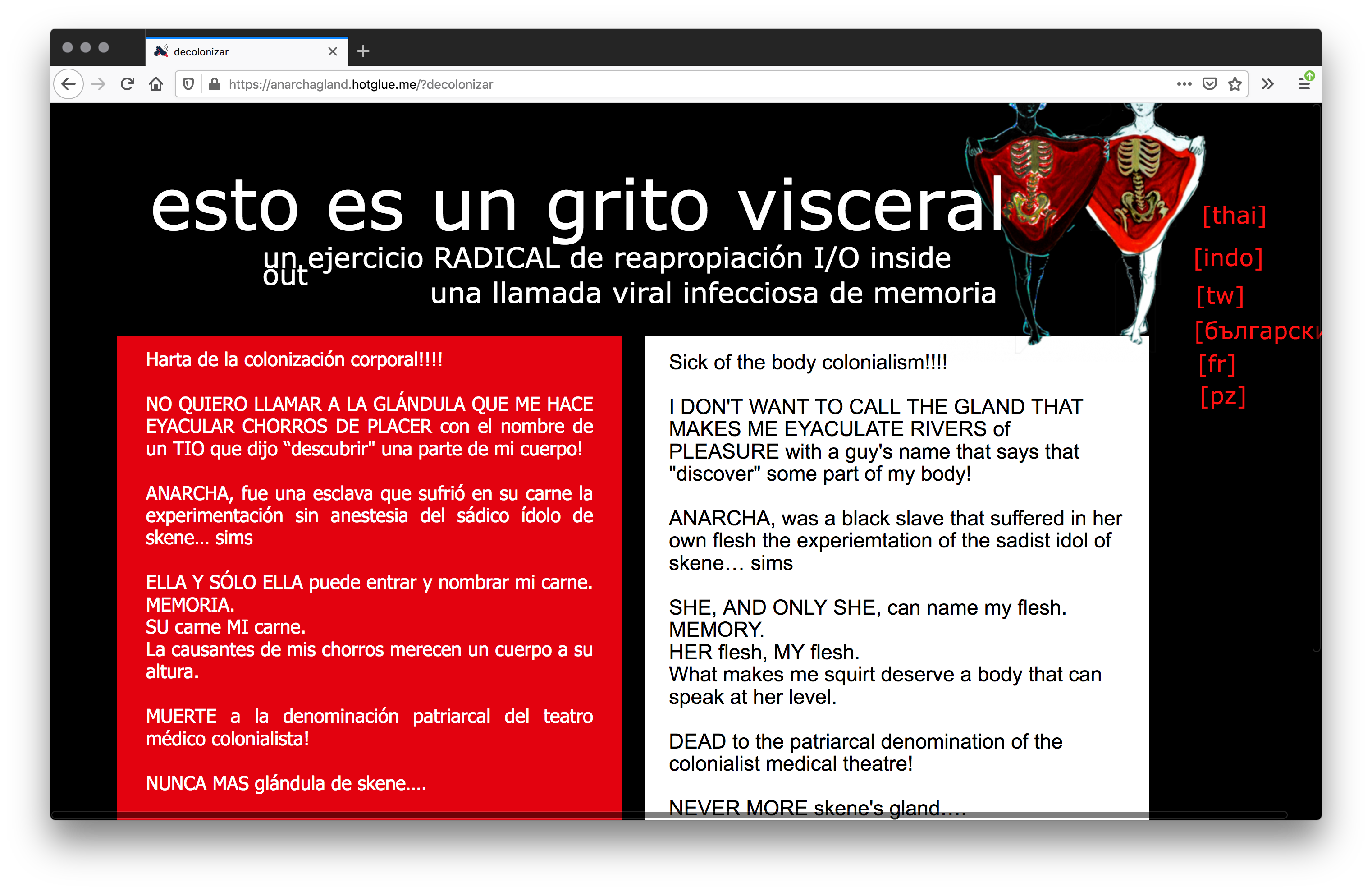
Screenshot, 2020, Firefox v76.0.1 on Mac OS 10.13.3; https://anarchagland.hotglue.me/?decolonizar

Artifact from https://anarchagland.hotglue.me/?decolonizar

Artifact from https://anarchagland.hotglue.me/?conTACTO/

Screenshot, 2020, Firefox v76.0.1 on Mac OS 10.13.3; https://anarchagland.hotglue.me/?glandulas

Artifact from https://anarchagland.hotglue.me/?spam_glitch
Harta de la colonización corporal!!!!
NO QUIERO LLAMAR A LA GLÁNDULA QUE ME HACE EYACULAR CHORROS DE PLACER con el nombre de un TIO que dijo ‘descubrir’ una parte de mi cuerpo!
ANARCHA, fue una esclava que sufrió en su carne la experimentación sin anestesia del sádico ídolo de skene… sims
ELLA Y SÓLO ELLA puede entrar y nombrar mi carne. MEMORIA.
SU carne MI carne.
La causantes de mis chorros merecen un cuerpo a su altura.
MUERTE a la denominación patriarcal del teatro médico colonialista!
NUNCA MAS glándula de skene….
DE AHORA EN ADELANTE:
GLÁNDULA DE ANARCHA!!!!!
Sick of the body colonialism!!!!
I DON’T WANT TO CALL THE GLAND THAT MAKES ME EJACULATE RIVERS of PLEASURE with a guy’s name that says that ‘discover’ some part of my body!
ANARCHA, was a black slave that suffered in her own flesh the experimetation of the sadist idol of skene… sims
SHE, AND ONLY SHE, can name my flesh. (x) MEMORY.
HER flesh, MY flesh.
What makes me squirt deserve a body that can speak at her level.
DEAD to the patriarcal denomination of the colonialist medical theatre!
NEVER MORE skene’s gland….
FROM NOW ON: ANARCHA’S GLAND!!!!!
2013, Klau Chinche (Klau Kinky), https://anarchagland.hotglue.me/; excerpt from “decolonizar,” gLÁndula de Anarcha, https://anarchagland.hotglue.me/?decolonizar

Screenshot, 2020, Firefox v76.0.1 on Mac OS 10.13.3; https://anarchagland.hotglue.me/
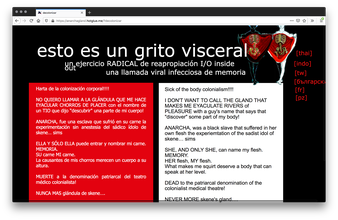
Screenshot, 2020, Firefox v76.0.1 on Mac OS 10.13.3; https://anarchagland.hotglue.me/?decolonizar

Artifact from https://anarchagland.hotglue.me/?decolonizar

Artifact from https://anarchagland.hotglue.me/?conTACTO/
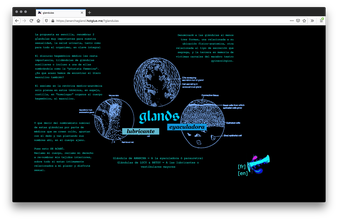
Screenshot, 2020, Firefox v76.0.1 on Mac OS 10.13.3; https://anarchagland.hotglue.me/?glandulas

Artifact from https://anarchagland.hotglue.me/?spam_glitch
(407)
2013
In Search of Digital Feminisms: Digital Gender & Aesthetic Technology
Sol Morén
“What is it that influences girls’ choices of new technology? How is digital creativity affected by gender norms? ‘Digital Gender & Aesthetic Technology’ aims to make visible females as creative developers of the Internet and new technology, through interviews with students, artists, project managers, and entrepreneurs. The prevailing social norms appear to be reflected on the Internet as ‘digital gender norms,‘ where girls and boys prefer apparently different communication tools. While working with the question of ‘digital gender,’ I have developed the hypothesis of ‘Aesthetic Technology,’ namely that girls often have an artistic approach towards technology. Girls mainly learn technology for a personal reason, planning to create something once they have learned the technique, and their goal often have aesthetic preferences. The question of girls ‘becoming technical,’ is more complicated than one might first think, in relation to gender. Even though young girls are often just as interested in technology as young boys are, it is difficult for them to keep or adapt their technical interest to normative femininity in their teens. Another problem is that expressions of technical competence or innovation, which do not correspond to the predominant male norm, might be hard to recognize. Females who study within the field of creative digital technology often begin their career by struggling with questions of equality, instead of just practicing their profession.” —Sol Morén, abstract
Published by Lateral
http://csalateral.org/issue/2/digital-gender-aesthetic-technology-moren/
“What is it that influences girls’ choices of new technology? How is digital creativity affected by gender norms? ‘Digital Gender & Aesthetic Technology’ aims to make visible females as creative developers of the Internet and new technology, through interviews with students, artists, project managers, and entrepreneurs. The prevailing social norms appear to be reflected on the Internet as ‘digital gender norms,‘ where girls and boys prefer apparently different communication tools. While working with the question of ‘digital gender,’ I have developed the hypothesis of ‘Aesthetic Technology,’ namely that girls often have an artistic approach towards technology. Girls mainly learn technology for a personal reason, planning to create something once they have learned the technique, and their goal often have aesthetic preferences. The question of girls ‘becoming technical,’ is more complicated than one might first think, in relation to gender. Even though young girls are often just as interested in technology as young boys are, it is difficult for them to keep or adapt their technical interest to normative femininity in their teens. Another problem is that expressions of technical competence or innovation, which do not correspond to the predominant male norm, might be hard to recognize. Females who study within the field of creative digital technology often begin their career by struggling with questions of equality, instead of just practicing their profession.” —Sol Morén, abstract
Published by Lateral
http://csalateral.org/issue/2/digital-gender-aesthetic-technology-moren/
(408)
2013
Cybersexism: Sex, Gender and Power on the Internet
Laurie Penny
“It's a tough time to be a woman on the internet. Over the past two generations, the political map of human relations has been redrawn by feminism and by changes in technology. Together they pose questions about the nature and organisation of society that are deeply challenging to those in power, and in both cases, the backlash is on. In this brave new world, old-style sexism is making itself felt in new and frightening ways. In Cybersexism, Laurie Penny goes to the dark heart of the matter and asks why threats of rape and violence are being used to try to silence female voices, analyses the structure of online misogyny, and makes a case for real freedom of speech – for everyone.” —Summary by the publisher Bloomsbury
https://www.bloomsbury.com/us/cybersexism-9781408853207/
“It's a tough time to be a woman on the internet. Over the past two generations, the political map of human relations has been redrawn by feminism and by changes in technology. Together they pose questions about the nature and organisation of society that are deeply challenging to those in power, and in both cases, the backlash is on. In this brave new world, old-style sexism is making itself felt in new and frightening ways. In Cybersexism, Laurie Penny goes to the dark heart of the matter and asks why threats of rape and violence are being used to try to silence female voices, analyses the structure of online misogyny, and makes a case for real freedom of speech – for everyone.” —Summary by the publisher Bloomsbury
https://www.bloomsbury.com/us/cybersexism-9781408853207/
(409)
2013
Free as in Sexist? Free Culture and the Gender Gap
Joseph Reagle
“Despite the values of freedom and openness, the free culture movement’s gender balance is as skewed (or more so) as that of the computing culture from which it arose. Based on the collection and analysis of discourse on gender and sexism within this movement over a six–year period. I suggest three possible causes: (a) some geek identities can be narrow and unappealing; (b) open communities are especially susceptible to difficult people; and, (c) the ideas of freedom and openness can be used to dismiss concerns and rationalize the gender gap as a matter of preference and choice.” —Joseph Reagle, abstract
First Monday, Volume 18, Number 1 - 7 January 2013 https://firstmonday.org/ojs/index.php/fm/article/download/4291/3381 doi:10.5210/fm.v18i1.4291
https://firstmonday.org/ojs/index.php/fm/article/view/4291/3381
“Despite the values of freedom and openness, the free culture movement’s gender balance is as skewed (or more so) as that of the computing culture from which it arose. Based on the collection and analysis of discourse on gender and sexism within this movement over a six–year period. I suggest three possible causes: (a) some geek identities can be narrow and unappealing; (b) open communities are especially susceptible to difficult people; and, (c) the ideas of freedom and openness can be used to dismiss concerns and rationalize the gender gap as a matter of preference and choice.” —Joseph Reagle, abstract
First Monday, Volume 18, Number 1 - 7 January 2013 https://firstmonday.org/ojs/index.php/fm/article/download/4291/3381 doi:10.5210/fm.v18i1.4291
https://firstmonday.org/ojs/index.php/fm/article/view/4291/3381
(410)
2013
Queer History of Computing
Jacob Gaboury
For most historians of technology, questions of sexuality are irrelevant to the technical achievements of an individual, and while queer historical work exists for significant literary and cultural figures, very little work has been done on queer figures in the history of technology. This may be due to the guarded lives these men led, and an almost total lack of personal biographical information available in existing historical accounts. Even the archives of these figures are in many cases lacking, as material relevant to the personal lives of these men is often excluded or withheld.
This division between the personal and technical is significant, and with few exceptions these men seem to have internalized this distinction, living lives that moved between worlds both public and private. These men lived in times radically different than our own, times in which the contexts and dispositions surrounding homosexuality were undergoing dramatic transformation. Just as computers evolve over the course of the twentieth century from simple tabulating machines to complex, interactive, expressive systems, homosexuality is also transformed and recoded, burdened with visibility and identity.
2013, Jacob Gaboury, Rhizome, February 19, 2013, https://rhizome.org/editorial/2013/feb/19/queer-computing-1/
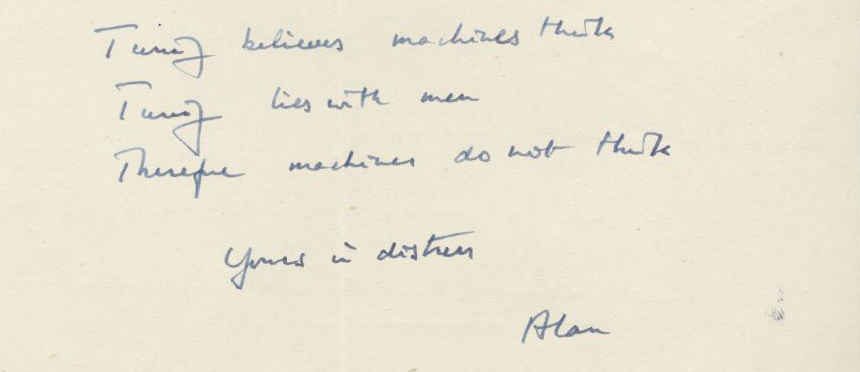
“Alan Turing, Letter to Dr. N. A. Routledge, AMT/D/14A Turing Archive”, image from Rhizome essay
For most historians of technology, questions of sexuality are irrelevant to the technical achievements of an individual, and while queer historical work exists for significant literary and cultural figures, very little work has been done on queer figures in the history of technology. This may be due to the guarded lives these men led, and an almost total lack of personal biographical information available in existing historical accounts. Even the archives of these figures are in many cases lacking, as material relevant to the personal lives of these men is often excluded or withheld.
This division between the personal and technical is significant, and with few exceptions these men seem to have internalized this distinction, living lives that moved between worlds both public and private. These men lived in times radically different than our own, times in which the contexts and dispositions surrounding homosexuality were undergoing dramatic transformation. Just as computers evolve over the course of the twentieth century from simple tabulating machines to complex, interactive, expressive systems, homosexuality is also transformed and recoded, burdened with visibility and identity.
2013, Jacob Gaboury, Rhizome, February 19, 2013, https://rhizome.org/editorial/2013/feb/19/queer-computing-1/
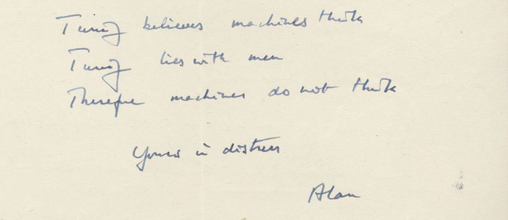
“Alan Turing, Letter to Dr. N. A. Routledge, AMT/D/14A Turing Archive”, image from Rhizome essay
(411)
2013
Feminisms and Technology, a bibliography in progress
Jacqueline Wernimont
“I’ve been working on a now forthcoming article on feminisms and digital archives (for Spring DHQ) for a couple of years now. While the article initially was going to ask if XML and XSLT (markup and transformation languages used in many digital archives) could be thought of as feminist, I ended up writing a piece that talks about how difficult that question is to even ask. There are incredibly complex social scenes in which these tools are deployed, and most work today in technology studies acknowledges the ‘technosocial’ scene as important to theorizing a tool. But even before dealing with the scenes of tool usage, I found that I had an incredibly difficult time finding many good resources on feminisms and digital technology of the sort used in digital archives. In even the best of situations, I was using work that addressed very different kinds of technology and that presents certain challenges.” —Jacqueline Wernimont, excerpt
“I’ve been working on a now forthcoming article on feminisms and digital archives (for Spring DHQ) for a couple of years now. While the article initially was going to ask if XML and XSLT (markup and transformation languages used in many digital archives) could be thought of as feminist, I ended up writing a piece that talks about how difficult that question is to even ask. There are incredibly complex social scenes in which these tools are deployed, and most work today in technology studies acknowledges the ‘technosocial’ scene as important to theorizing a tool. But even before dealing with the scenes of tool usage, I found that I had an incredibly difficult time finding many good resources on feminisms and digital technology of the sort used in digital archives. In even the best of situations, I was using work that addressed very different kinds of technology and that presents certain challenges.” —Jacqueline Wernimont, excerpt
(412)
2013–
2015
Hashtag Feminism
Tara L. Conley
Hashtag Feminism is a digital platform that was born out of love for Internet culture and passion for social justice. I launched the website on December 20, 2013, seven days after Beyonce dropped her first digital album, Beyonce, and four days after I published an online case study about Renisha McBride. I was in my third year of graduate school drafting ideas for my dissertation. I had time and creative juices to spare. All of these factors, including the demand for “collecting receipts” on Twitter influenced the form and function of Hashtag Feminism. Over the next several months, I worked with feminist writers who I met on Twitter, to build an online platform that reflected the culture and politics of the so-called hashtag activism era. In 2015, about a year into my dissertation, I realized I spent more money and time than I could afford trying to maintain the site while also paying writers. The website was being hacked around the time of GamerGate and targeted harassment of feminist media online. It was also around this time that I lost content on the site. A Columbia professor and his students hosted a #Feminism hack-a-thon to try to help retrieve some of the content, but ultimately, the Hashtag Feminism I started in 2013 was gone.
2013, Tara L. Conley, https://www.hashtagfeminism.com/
Hashtag Feminism is a digital platform that was born out of love for Internet culture and passion for social justice. I launched the website on December 20, 2013, seven days after Beyonce dropped her first digital album, Beyonce, and four days after I published an online case study about Renisha McBride. I was in my third year of graduate school drafting ideas for my dissertation. I had time and creative juices to spare. All of these factors, including the demand for “collecting receipts” on Twitter influenced the form and function of Hashtag Feminism. Over the next several months, I worked with feminist writers who I met on Twitter, to build an online platform that reflected the culture and politics of the so-called hashtag activism era. In 2015, about a year into my dissertation, I realized I spent more money and time than I could afford trying to maintain the site while also paying writers. The website was being hacked around the time of GamerGate and targeted harassment of feminist media online. It was also around this time that I lost content on the site. A Columbia professor and his students hosted a #Feminism hack-a-thon to try to help retrieve some of the content, but ultimately, the Hashtag Feminism I started in 2013 was gone.
2013, Tara L. Conley, https://www.hashtagfeminism.com/
(413)
2013
Code Liberation
Phoenix Perry
We work together with only one simple mission: teach women, nonbinary, femme, and girl-identifying people to program using creativity as a pedagogical approach. Our aim is to reach women that have never considered entering into the field of computer science or who have left it because it is male-dominated. Often presented within the current educational system as something that men or boys do, young women, nonbinary, femme, and girl-identifying people are excluded by default. By offering low risk educational opportunities to this population within a safe, non-competitive atmosphere, these marginalized people can be reintroduced to programming as a way to create and understand their world.
2013, Phoenix Perry, http://codeliberation.org/
We work together with only one simple mission: teach women, nonbinary, femme, and girl-identifying people to program using creativity as a pedagogical approach. Our aim is to reach women that have never considered entering into the field of computer science or who have left it because it is male-dominated. Often presented within the current educational system as something that men or boys do, young women, nonbinary, femme, and girl-identifying people are excluded by default. By offering low risk educational opportunities to this population within a safe, non-competitive atmosphere, these marginalized people can be reintroduced to programming as a way to create and understand their world.
2013, Phoenix Perry, http://codeliberation.org/
(414)
2013
Minority Tech: Journaling Through Blackness and Technology
Anjuan Simmons
“How does the African American experience intersect with solving the severe lack of diversity in the technology sector? Anjuan Simmons explores the answer to this question in Minority Tech: Journaling Through Blackness and Technology. The book is an essay anthology of the author's online and print works organized around the themes of Blackness, technology, diversity, and our collective humanity.” —Anjuan Simmons
“How does the African American experience intersect with solving the severe lack of diversity in the technology sector? Anjuan Simmons explores the answer to this question in Minority Tech: Journaling Through Blackness and Technology. The book is an essay anthology of the author's online and print works organized around the themes of Blackness, technology, diversity, and our collective humanity.” —Anjuan Simmons
(415)
2013
The Future of Online Feminism
Zerlina Maxwell
Feminism is not dead. The future of feminism is happening online. […] “#FemFuture: Online Revolution” is a research paper put together by Feministing co-founder Vanessa Valenti and Editor Emeritus Courtney Martin with collaboration of influential voices of online feminism, with the purpose of strategizing how to make the next phase of feminism sustainable.
Martin begins the report by saying, “Online feminism has transformed the way advocacy and action function within the feminist movement. And yet, this amazing innovation in movement organizing is unsustainable. Bloggers and online organizers largely suffer from a psychology of deprivation—a sense that their work will never be rewarded as it deserves to be, that they are in direct competition with one another for the scraps that come from third-party ad companies or other inadequate attempts to bring in revenue. As a result, they are vulnerable, less effective, and risk burn out. Under these conditions, online feminism isn’t being sufficiently linked to larger organizational and movement efforts and/or leveraged for the greatest impact at this critical moment.”
2013, Zerlina Maxwell, Ebony, April 11, 2013, https://www.ebony.com/news/the-future-of-online-feminism/
Feminism is not dead. The future of feminism is happening online. […] “#FemFuture: Online Revolution” is a research paper put together by Feministing co-founder Vanessa Valenti and Editor Emeritus Courtney Martin with collaboration of influential voices of online feminism, with the purpose of strategizing how to make the next phase of feminism sustainable.
Martin begins the report by saying, “Online feminism has transformed the way advocacy and action function within the feminist movement. And yet, this amazing innovation in movement organizing is unsustainable. Bloggers and online organizers largely suffer from a psychology of deprivation—a sense that their work will never be rewarded as it deserves to be, that they are in direct competition with one another for the scraps that come from third-party ad companies or other inadequate attempts to bring in revenue. As a result, they are vulnerable, less effective, and risk burn out. Under these conditions, online feminism isn’t being sufficiently linked to larger organizational and movement efforts and/or leveraged for the greatest impact at this critical moment.”
2013, Zerlina Maxwell, Ebony, April 11, 2013, https://www.ebony.com/news/the-future-of-online-feminism/
(416)
2013
African Declaration on Internet Rights and Freedoms
The African Declaration on Internet Rights and Freedoms is a Pan-African initiative to promote human rights standards and principles of openness in Internet policy formulation and implementation on the continent. The Declaration is intended to elaborate on the principles which are necessary to uphold human and people’s rights on the Internet, and to cultivate an Internet environment that can best meet Africa’s social and economic development needs and goals.
The Declaration builds on well-established African human rights documents including the African Charter on Human and Peoples’ Rights of 1981, the Windhoek Declaration on Promoting an Independent and Pluralistic African Press of 1991, the African Charter on Broadcasting of 2001, the Declaration of Principles on Freedom of Expression in Africa of 2002, and the African Platform on Access to Information Declaration of 2011. Our mission is for the Declaration to be widely endorsed by all those with a stake in the Internet in Africa and to help shape approaches to Internet policy-making and governance across the continent.
https://africaninternetrights.org/about/
The African Declaration on Internet Rights and Freedoms is a Pan-African initiative to promote human rights standards and principles of openness in Internet policy formulation and implementation on the continent. The Declaration is intended to elaborate on the principles which are necessary to uphold human and people’s rights on the Internet, and to cultivate an Internet environment that can best meet Africa’s social and economic development needs and goals.
The Declaration builds on well-established African human rights documents including the African Charter on Human and Peoples’ Rights of 1981, the Windhoek Declaration on Promoting an Independent and Pluralistic African Press of 1991, the African Charter on Broadcasting of 2001, the Declaration of Principles on Freedom of Expression in Africa of 2002, and the African Platform on Access to Information Declaration of 2011. Our mission is for the Declaration to be widely endorsed by all those with a stake in the Internet in Africa and to help shape approaches to Internet policy-making and governance across the continent.
https://africaninternetrights.org/about/
(417)
2013–
2018
0s+1s
Choterina Freer, Sonia Hedstrand, Anna Kinbom, Rut Karin Zettergren
0s+1s is an ongoing research and production project by Choterina Freer (UK), Sonia Hedstrand (SE), Anna Kinbom (SE) and Rut Karin Zettergren (SE/FI). Our interests include the politics of technology, hierarchical structures and possible disruptions in the context of art practice, and cyberfeminist practices established in the 80’s and how they figure now.
2015, Choterina Freer, Sonia Hedstrand, Anna Kinbom, and Rut Karin Zettergren, http://cargocollective.com/zerosones
0s+1s is an ongoing research and production project by Choterina Freer (UK), Sonia Hedstrand (SE), Anna Kinbom (SE) and Rut Karin Zettergren (SE/FI). Our interests include the politics of technology, hierarchical structures and possible disruptions in the context of art practice, and cyberfeminist practices established in the 80’s and how they figure now.
2015, Choterina Freer, Sonia Hedstrand, Anna Kinbom, and Rut Karin Zettergren, http://cargocollective.com/zerosones
(418)
2013
VVVVVV
Faith Holland
For VVVVVV, I developed a fully-functional “pornographic” website that depicts no nudity, only abstract images that address pornography’s use of women’s bodies throughout the history of the world wide web (WWW). The website uses appropriated footage that represents both the internet and the vagina. The project teases out an alternative history of the world wide web, pornography, and women’s bodies. The website critiques the dearth of representations of female anatomy, within and beyond pornography, and its relative cultural unimportance as compared to phallic imagery. By evoking a 1990s aesthetic—a time when mainstream consumers first got online—the website confronts the commercialization of the Internet that was accomplished using women’s bodies. The vagina is mapped onto how the popular visual imagination conceives the physical presence of the internet as an endless, tunneling space (as seen in The Matrix, Hackers, and Lawnmower Man), which, in the context of VVVVVV, becomes what I call a “cyberpussy.” The site maps out new theoretical potentialities for gender, technology, and sex.
2013, Faith Holland, http://www.vvvvvv.xxx/; referred by Melanie Hoff
http://www.faithholland.com/portfolio_page/vvvvvv/
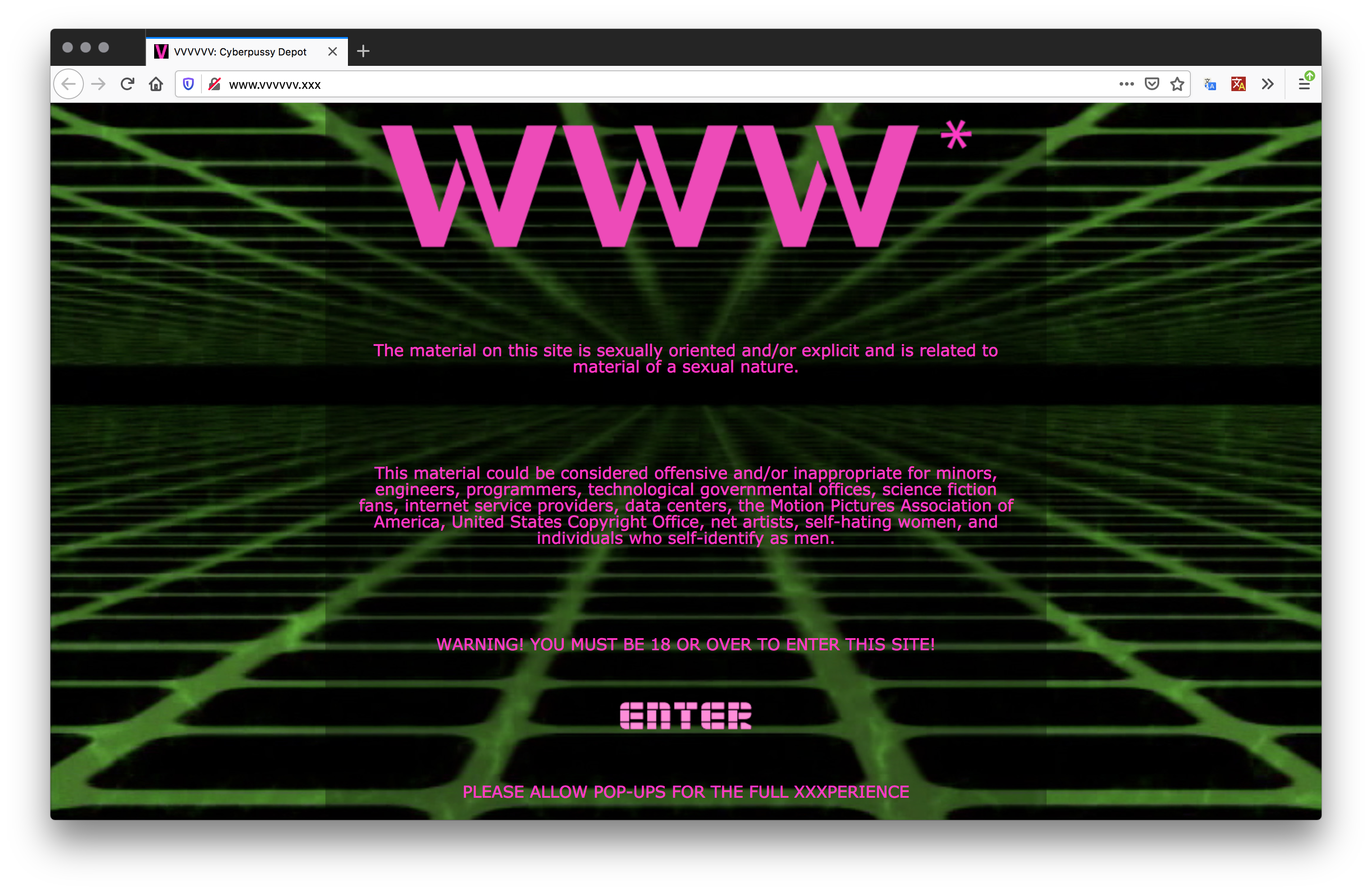
Screenshot, 2020, Firefox v76.0.1 on Mac OS 10.13.3; http://www.vvvvvv.xxx/

Screenshot, 2020, Firefox v76.0.1 on Mac OS 10.13.3; www.vvvvvv.xxx/vvvvvvpa/phallacy.html
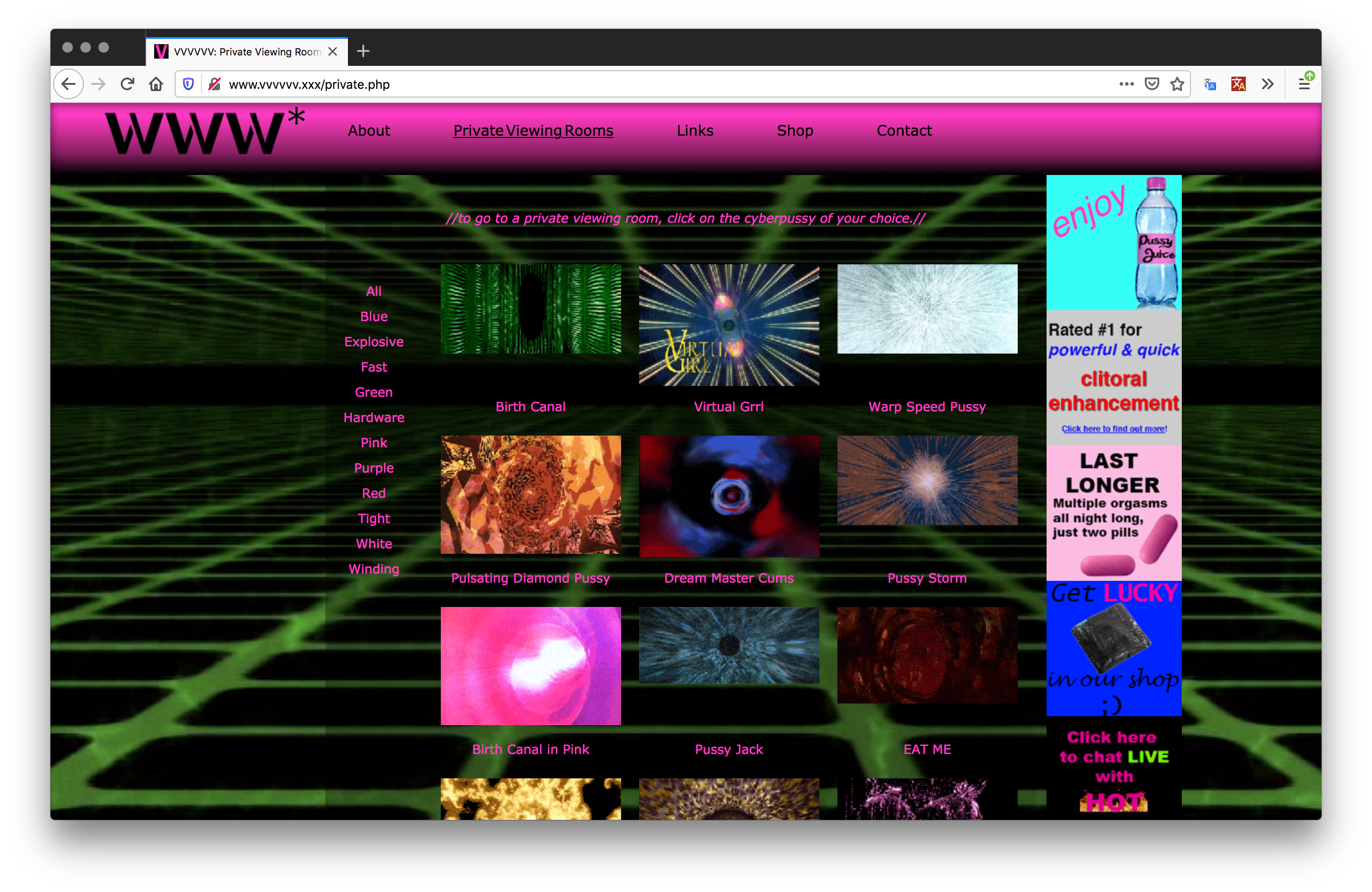
Screenshot, 2020, Firefox v76.0.1 on Mac OS 10.13.3; http://www.vvvvvv.xxx/private.php

Screenshot, 2020, Firefox v76.0.1 on Mac OS 10.13.3; http://www.vvvvvv.xxx/private/diamond-pussy.php

Screenshot, 2020, Firefox v76.0.1 on Mac OS 10.13.3; www.vvvvvv.xxx/vvvvvvpa/000000-gradient.html
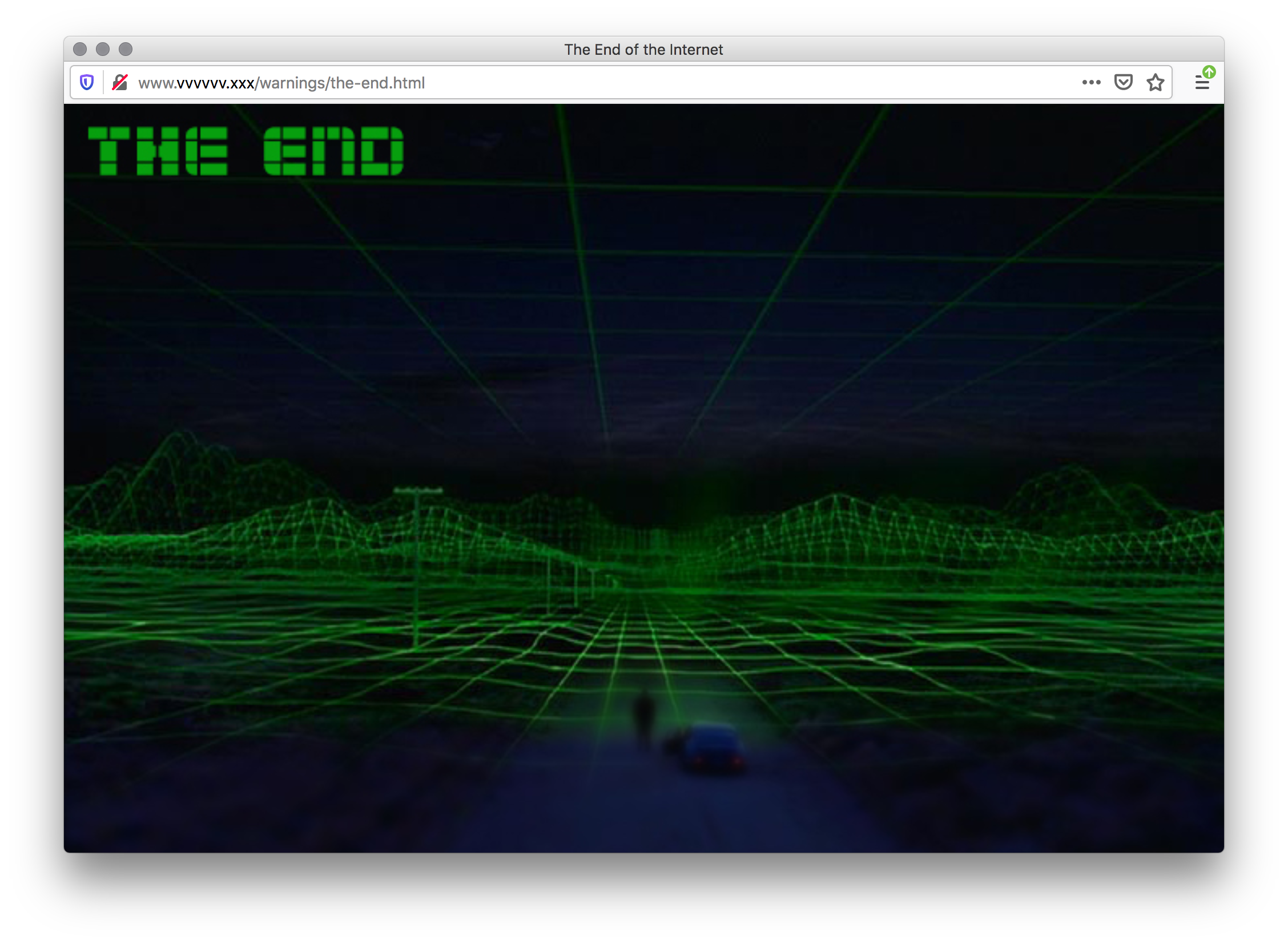
Screenshot, 2020, Firefox v76.0.1 on Mac OS 10.13.3; www.vvvvvv.xxx/warnings/the-end.html
For VVVVVV, I developed a fully-functional “pornographic” website that depicts no nudity, only abstract images that address pornography’s use of women’s bodies throughout the history of the world wide web (WWW). The website uses appropriated footage that represents both the internet and the vagina. The project teases out an alternative history of the world wide web, pornography, and women’s bodies. The website critiques the dearth of representations of female anatomy, within and beyond pornography, and its relative cultural unimportance as compared to phallic imagery. By evoking a 1990s aesthetic—a time when mainstream consumers first got online—the website confronts the commercialization of the Internet that was accomplished using women’s bodies. The vagina is mapped onto how the popular visual imagination conceives the physical presence of the internet as an endless, tunneling space (as seen in The Matrix, Hackers, and Lawnmower Man), which, in the context of VVVVVV, becomes what I call a “cyberpussy.” The site maps out new theoretical potentialities for gender, technology, and sex.
2013, Faith Holland, http://www.vvvvvv.xxx/; referred by Melanie Hoff
http://www.faithholland.com/portfolio_page/vvvvvv/
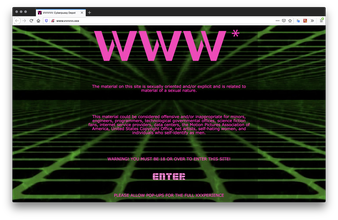
Screenshot, 2020, Firefox v76.0.1 on Mac OS 10.13.3; http://www.vvvvvv.xxx/

Screenshot, 2020, Firefox v76.0.1 on Mac OS 10.13.3; www.vvvvvv.xxx/vvvvvvpa/phallacy.html

Screenshot, 2020, Firefox v76.0.1 on Mac OS 10.13.3; http://www.vvvvvv.xxx/private.php
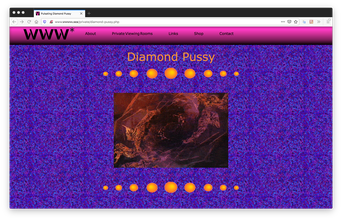
Screenshot, 2020, Firefox v76.0.1 on Mac OS 10.13.3; http://www.vvvvvv.xxx/private/diamond-pussy.php
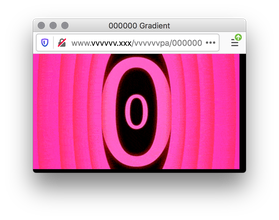
Screenshot, 2020, Firefox v76.0.1 on Mac OS 10.13.3; www.vvvvvv.xxx/vvvvvvpa/000000-gradient.html
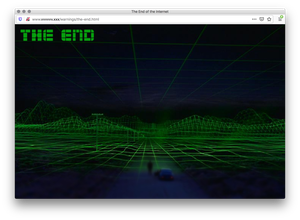
Screenshot, 2020, Firefox v76.0.1 on Mac OS 10.13.3; www.vvvvvv.xxx/warnings/the-end.html
(419)
2013
Laboratoria
Maria Paula Rivarola, Matias Hoyl, Regina Acher, Araceli Campos, Ofelia Reyes
Laboratoria tiene como objetivo dar forma a una economía digital más diversa, inclusiva y competitiva, que abra oportunidades para que cada mujer desarrolle su potencial y, de esta manera, transforme el futuro de América Latina. […] En Laboratoria mujeres y organizaciones aprenden de forma continua y se adaptan al cambio, la clave para crecer en la era digital.
Laboratoria aims to shape a more diverse, inclusive and competitive digital economy, which opens up opportunities for every woman to develop her potential and, in this way, transform the future of Latin America. […] We prepare women and organizations to adapt to change and learn continuously, the key for growing in the digital age.
2013, Maria Paula Rivarola, Matias Hoyl, Regina Acher, Araceli Campos, and Ofelia Reyes, https://www.laboratoria.la/
Peru, Chile, Mexico, Brasil
Laboratoria tiene como objetivo dar forma a una economía digital más diversa, inclusiva y competitiva, que abra oportunidades para que cada mujer desarrolle su potencial y, de esta manera, transforme el futuro de América Latina. […] En Laboratoria mujeres y organizaciones aprenden de forma continua y se adaptan al cambio, la clave para crecer en la era digital.
Laboratoria aims to shape a more diverse, inclusive and competitive digital economy, which opens up opportunities for every woman to develop her potential and, in this way, transform the future of Latin America. […] We prepare women and organizations to adapt to change and learn continuously, the key for growing in the digital age.
2013, Maria Paula Rivarola, Matias Hoyl, Regina Acher, Araceli Campos, and Ofelia Reyes, https://www.laboratoria.la/
Peru, Chile, Mexico, Brasil
(420)
2013
Cyberfeminism and its Political Implications for Women in the Arab World
Rita Stephan
For over a decade, Arab women activists have used cyberspace as an instrument for their feminism. […] Cyberspace offered Arab women the opportunity to further their political participation […] from the comfort of their own personal computers.
Initially, women’s use of the Internet was mostly uncontested. The conservative patriarchal social structure and its apparatus viewed women’s amusement with computers as a way to further their exclusion from the physical world. […] Cyberactivism is not without its challenges and limitations. First, the noticeable increase in the rates of Internet connectivity throughout the Arab world is not universal. […] Moreover, women’s access to cyberspace continues to be restricted by high female illiteracy rates and unfamiliarity with foreign languages (mostly English), in which most of the information on the web is available. In addition, many regimes exercise further restrictions on Internet usage directly and indirectly by banning access to certain websites, exercising strong limitations on freedom of the Net, or by not offering fast connections. […] Many see a danger in allowing women free access to the Internet.
2013, Rita Stephan, E-International Relations, August 28, 2013, https://www.e-ir.info/2013/08/28/cyberfeminism-and-its-political-implications-for-women-in-the-arab-world/
https://www.are.na/block/7977269
For over a decade, Arab women activists have used cyberspace as an instrument for their feminism. […] Cyberspace offered Arab women the opportunity to further their political participation […] from the comfort of their own personal computers.
Initially, women’s use of the Internet was mostly uncontested. The conservative patriarchal social structure and its apparatus viewed women’s amusement with computers as a way to further their exclusion from the physical world. […] Cyberactivism is not without its challenges and limitations. First, the noticeable increase in the rates of Internet connectivity throughout the Arab world is not universal. […] Moreover, women’s access to cyberspace continues to be restricted by high female illiteracy rates and unfamiliarity with foreign languages (mostly English), in which most of the information on the web is available. In addition, many regimes exercise further restrictions on Internet usage directly and indirectly by banning access to certain websites, exercising strong limitations on freedom of the Net, or by not offering fast connections. […] Many see a danger in allowing women free access to the Internet.
2013, Rita Stephan, E-International Relations, August 28, 2013, https://www.e-ir.info/2013/08/28/cyberfeminism-and-its-political-implications-for-women-in-the-arab-world/
https://www.are.na/block/7977269
(421)
2013
Feminist Engagements with 21st-Century Communications Technology
Jennifer Radloff
Women’s networks started working with inclusive strategies such as printing out and faxing emails from mailing lists, recording conference proceedings and circulating them to community radio stations, offering printed versions of internet-based articles. Organizations focusing on building women’s capacity to use ICTs effectively were born, such as Women’sNet in South Africa, Women of Uganda Network (WOUGNET) in Uganda and Linux Chix Africa. Collaborative networks were created such as FLAMME, a network of African women online, committed to strengthening the capacity of women through the use of ICTs to lobby, advocate and participate in the Beijing +5 process. Powerful and inclusive methodologies were used to develop platforms and networks. Both FLAMME and Women’sNet brought women from organizations across Africa together to share skills and build capacity in creating websites and facilitating mailing lists.
2013, Jennifer Radloff, in “e-spaces : e-politics,” ed. Jennifer Radloff, special issue, Feminist Africa 18 (2013): pp. 1–11; excerpt p. 4
Africa
Women’s networks started working with inclusive strategies such as printing out and faxing emails from mailing lists, recording conference proceedings and circulating them to community radio stations, offering printed versions of internet-based articles. Organizations focusing on building women’s capacity to use ICTs effectively were born, such as Women’sNet in South Africa, Women of Uganda Network (WOUGNET) in Uganda and Linux Chix Africa. Collaborative networks were created such as FLAMME, a network of African women online, committed to strengthening the capacity of women through the use of ICTs to lobby, advocate and participate in the Beijing +5 process. Powerful and inclusive methodologies were used to develop platforms and networks. Both FLAMME and Women’sNet brought women from organizations across Africa together to share skills and build capacity in creating websites and facilitating mailing lists.
2013, Jennifer Radloff, in “e-spaces : e-politics,” ed. Jennifer Radloff, special issue, Feminist Africa 18 (2013): pp. 1–11; excerpt p. 4
Africa
(422)
2013
Feminist Africa 18: e-spaces : e-politics
The advent and development of the internet has expanded the frontiers of feminist activism. Feminist Africa is itself a prime example of the audacious digital engagements displayed by women’s movements all over the world. Established over 10 years ago with the support of Africa’s resurgent feminist community, Feminist Africa is the continent’s first open-access online scholarly journal, and still the only one dedicated to publishing and promoting independent feminist scholarship as an activist project. Originally envisaged as an online intellectual forum for feminist research and activism, FA also produced a limited print edition to address the limited digital access that the African Gender Institute’s survey of the feminist intellectual community revealed.
2013, Jennifer Radloff, ed.; excerpt from Jennifer Radloff, “Feminist Engagements with 21st-Century Communications Technology,” in “e-spaces : e-politics,” ed. Jennifer Radloff, special issue, Feminist Africa 18 (371) (2013): p. 1
Contributors include Jennifer Radloff, Brenda Nyandiko Sanya, Nyx McLean, Desiree Lewis, Tigist Shewarega Hussen, Monique van Vuuren, Selina Mudavanhu, Chisenga Muyoya, Kylie Thomas, Sarita Ranchod, Caroline Tagny, jac SM Kee, Daniel O Clunaigh, Kutoma J Wakunuma, Bella Hwang, and Oumy Khairy Ndiaye.
http://www.agi.uct.ac.za/agi/feminist-africa/18/
The advent and development of the internet has expanded the frontiers of feminist activism. Feminist Africa is itself a prime example of the audacious digital engagements displayed by women’s movements all over the world. Established over 10 years ago with the support of Africa’s resurgent feminist community, Feminist Africa is the continent’s first open-access online scholarly journal, and still the only one dedicated to publishing and promoting independent feminist scholarship as an activist project. Originally envisaged as an online intellectual forum for feminist research and activism, FA also produced a limited print edition to address the limited digital access that the African Gender Institute’s survey of the feminist intellectual community revealed.
2013, Jennifer Radloff, ed.; excerpt from Jennifer Radloff, “Feminist Engagements with 21st-Century Communications Technology,” in “e-spaces : e-politics,” ed. Jennifer Radloff, special issue, Feminist Africa 18 (371) (2013): p. 1
Contributors include Jennifer Radloff, Brenda Nyandiko Sanya, Nyx McLean, Desiree Lewis, Tigist Shewarega Hussen, Monique van Vuuren, Selina Mudavanhu, Chisenga Muyoya, Kylie Thomas, Sarita Ranchod, Caroline Tagny, jac SM Kee, Daniel O Clunaigh, Kutoma J Wakunuma, Bella Hwang, and Oumy Khairy Ndiaye.
http://www.agi.uct.ac.za/agi/feminist-africa/18/
(423)
2013
Profile: The Asikana Network
Chisenga Muyoya
The Asikana Network is a women-driven group that aims to empower young women and equip them with information and communication technology (ICT) skills to help them in their various fields. Started in January 2012, Asikana, encouraged and supported by the BongHive1 leadership, has grown into a vibrant and innovative network of young women determined to challenge the “male geek” stereotype. The founders of Asikana Network, Ella Mbewe, Chisenga Muyoya and Regina Mtonga, met at a highly technical training course held at BongoHive in December 2011. Having been the only three female participants, they were driven to form a support group for women in technology.
2013, Chisenga Muyoya, in “e-spaces : e-politics,” ed. Jennifer Radloff, special issue, Feminist Africa 18 (2013): pp. 75–78; excerpt p. 75
Africa
The Asikana Network is a women-driven group that aims to empower young women and equip them with information and communication technology (ICT) skills to help them in their various fields. Started in January 2012, Asikana, encouraged and supported by the BongHive1 leadership, has grown into a vibrant and innovative network of young women determined to challenge the “male geek” stereotype. The founders of Asikana Network, Ella Mbewe, Chisenga Muyoya and Regina Mtonga, met at a highly technical training course held at BongoHive in December 2011. Having been the only three female participants, they were driven to form a support group for women in technology.
2013, Chisenga Muyoya, in “e-spaces : e-politics,” ed. Jennifer Radloff, special issue, Feminist Africa 18 (2013): pp. 75–78; excerpt p. 75
Africa
(424)
2013
EROTICS: Sexuality, freedom of expression and online censorship
Caroline Tagnay, jac SM Kee
In the first phase of the EROTICS project, researchers in five countries, including South Africa, have been attempting to define how “emerging debates and the growing practice of regulation of online content either impede or facilitate different ways women use the internet and the impact this has on their sexual expression, sexualities and sexual health practices, and assertion of their sexual rights.” The South African research, conducted by Jeanne Prinsloo, Relebohile Moletsane and Nicolene McLean focused particularly on lesbian and transgender people, their use and understanding of the internet to negotiate and perform their sexuality, as well as their understanding of the regulatory framework that could impact on the freedom of sexual expression. The research presents how transgender people converge at a popular transgender site to share their struggles in transitioning, including treatment options, unlearning dominant gender norms, celebrating achieved milestones and exchange experiences of discrimination faced.
2013, Caroline Tagny and jac SM Kee, in “e-spaces : e-politics,” ed. Jennifer Radloff, special issue, Feminist Africa 18 (371) (2013): pp. 117–123; excerpt p. 118
South Africa
In the first phase of the EROTICS project, researchers in five countries, including South Africa, have been attempting to define how “emerging debates and the growing practice of regulation of online content either impede or facilitate different ways women use the internet and the impact this has on their sexual expression, sexualities and sexual health practices, and assertion of their sexual rights.” The South African research, conducted by Jeanne Prinsloo, Relebohile Moletsane and Nicolene McLean focused particularly on lesbian and transgender people, their use and understanding of the internet to negotiate and perform their sexuality, as well as their understanding of the regulatory framework that could impact on the freedom of sexual expression. The research presents how transgender people converge at a popular transgender site to share their struggles in transitioning, including treatment options, unlearning dominant gender norms, celebrating achieved milestones and exchange experiences of discrimination faced.
2013, Caroline Tagny and jac SM Kee, in “e-spaces : e-politics,” ed. Jennifer Radloff, special issue, Feminist Africa 18 (371) (2013): pp. 117–123; excerpt p. 118
South Africa
(425)
2013
Double Union
Nora Trapp
Double Union calls itself a hacker / maker space, because our goal is to create a space where women and nonbinary people can feel equally comfortable knitting, coding, drawing, or using power tools and no one feels pressure to prove they belong here. Double Union members are creating a culture where we don’t just make awesome stuff—we also ask questions, feel confused sometimes, and break things.
2013, Nora Trapp, https://doubleunion.org/
Bay Area
Double Union calls itself a hacker / maker space, because our goal is to create a space where women and nonbinary people can feel equally comfortable knitting, coding, drawing, or using power tools and no one feels pressure to prove they belong here. Double Union members are creating a culture where we don’t just make awesome stuff—we also ask questions, feel confused sometimes, and break things.
2013, Nora Trapp, https://doubleunion.org/
Bay Area
(426)
2013
Mundane Afrofuturist Manifesto
Martine Syms
We did not originate in the cosmos.
The connection between Middle Passage and space travel is tenuous at best.
Out of five hundred thirty-four space travelers, fourteen have been black. An all-black crew is unlikely.
Magic interstellar travel and/or the wondrous communication grid can lead to an illusion of outer space and cyberspace as egalitarian.
This dream of utopia can encourage us to forget that outer space will not save us from injustice and that cyberspace was prefigured upon a ‘master/slave’ relationship.
While we are often Othered, we are not aliens.
Though our ancestors were mutilated, we are not mutants.
Post-black is a misnomer. Post-colonialism is too.
The most likely future is one in which we only have ourselves and this planet.”
2013, Martine Syms, The Third Rail 3, http://thirdrailquarterly.org/martine-syms-the-mundane-afrofuturist-manifesto/; referred by Legacy Russell
https://www.are.na/block/8247349
We did not originate in the cosmos.
The connection between Middle Passage and space travel is tenuous at best.
Out of five hundred thirty-four space travelers, fourteen have been black. An all-black crew is unlikely.
Magic interstellar travel and/or the wondrous communication grid can lead to an illusion of outer space and cyberspace as egalitarian.
This dream of utopia can encourage us to forget that outer space will not save us from injustice and that cyberspace was prefigured upon a ‘master/slave’ relationship.
While we are often Othered, we are not aliens.
Though our ancestors were mutilated, we are not mutants.
Post-black is a misnomer. Post-colonialism is too.
The most likely future is one in which we only have ourselves and this planet.”
2013, Martine Syms, The Third Rail 3, http://thirdrailquarterly.org/martine-syms-the-mundane-afrofuturist-manifesto/; referred by Legacy Russell
https://www.are.na/block/8247349
(427)
2013
Feminist Server
Femke Snelting
A feminist server • Is a situated technology. She has a sense of context and considers herself part of an ecology of practice • Is run for and by a community that cares enough for her in order to make her exist • Builds on the materiality of software, hardware and the bodies gathered around it • Opens herself to expose processes, tools, sources , habits, patterns • Does not strive for seamlessness. Talk of transparency too often signals that something is being made invisible (Division of labor—the not so fun stuff is made by people—that’s a feminisy issue) • Avoids efficiency, ease-of-use, scalability and immediacy because they can be traps • Knows that networking is actually an awkward, promiscuous and parasitic practice • Is autonomous in the sense that she decides for her own dependencies • Radically questions the conditions for serving and service; experiments with changing client–server relations where she can • Treats technology as part of a social reality • Wants networks to be mutable and read-write accessible • Does not confuse safety with security • Takes the risk of exposing her insecurity • Tries hard not to apologize when she sometimes is not available
2013, Femke Snelting, https://esc.mur.at/en/werk/feminist-server; referred by Klau Chinche (Klau Kinky)
A feminist server • Is a situated technology. She has a sense of context and considers herself part of an ecology of practice • Is run for and by a community that cares enough for her in order to make her exist • Builds on the materiality of software, hardware and the bodies gathered around it • Opens herself to expose processes, tools, sources , habits, patterns • Does not strive for seamlessness. Talk of transparency too often signals that something is being made invisible (Division of labor—the not so fun stuff is made by people—that’s a feminisy issue) • Avoids efficiency, ease-of-use, scalability and immediacy because they can be traps • Knows that networking is actually an awkward, promiscuous and parasitic practice • Is autonomous in the sense that she decides for her own dependencies • Radically questions the conditions for serving and service; experiments with changing client–server relations where she can • Treats technology as part of a social reality • Wants networks to be mutable and read-write accessible • Does not confuse safety with security • Takes the risk of exposing her insecurity • Tries hard not to apologize when she sometimes is not available
2013, Femke Snelting, https://esc.mur.at/en/werk/feminist-server; referred by Klau Chinche (Klau Kinky)
(428)
2013
Anarchaserver
Anarcha was an African American slave woman. […] She regularly underwent surgical experiments, while positioned on Sims’s table, squatting on all fours, and fully awake without the comfort of any anesthesia. […] She, Betsey, Lucy, and countless others helped Dr Sims hone his techniques and create his gynecological tools. […] Anarcha, Betsey, and Lucy left no written legacy. […] And though science today looks back on Sims’s work ambiguously, truly unsure as to his level of success, or whether he should be credited as the father of gynecology, we now know who the mothers of modern gynecology were: […] Anarcha, Betsey, and Lucy. It is our hope that these names will never be forgotten. […]
Feminist servers [aim to create] a more autonomous infrastructure to ensure that data, projects and memory of feminist groups are properly accessible, preserved and managed. The need for feminist servers is a response to: the unethical practices of multinational ICT companies acting as moral and hypocrite censors; gender based online violence in the form of trolling and hateful misogynist harassing feminist or women activists online and offline; the centralization of the internet and its transformation into a consumption sanctuary and a space of surveillance, control and tracking of dissent voices by government agencies among others.
2013, http://anarchaserver.org/; excerpt from “History of Anarchaservers and Feminist Servers,” Anarchaserver,” https://alexandria.anarchaserver.org/index.php/History_of_Anarchaserver_and_Feminists_Servers_visit_this_section; referred by Klau Chinche (Klau Kinky)
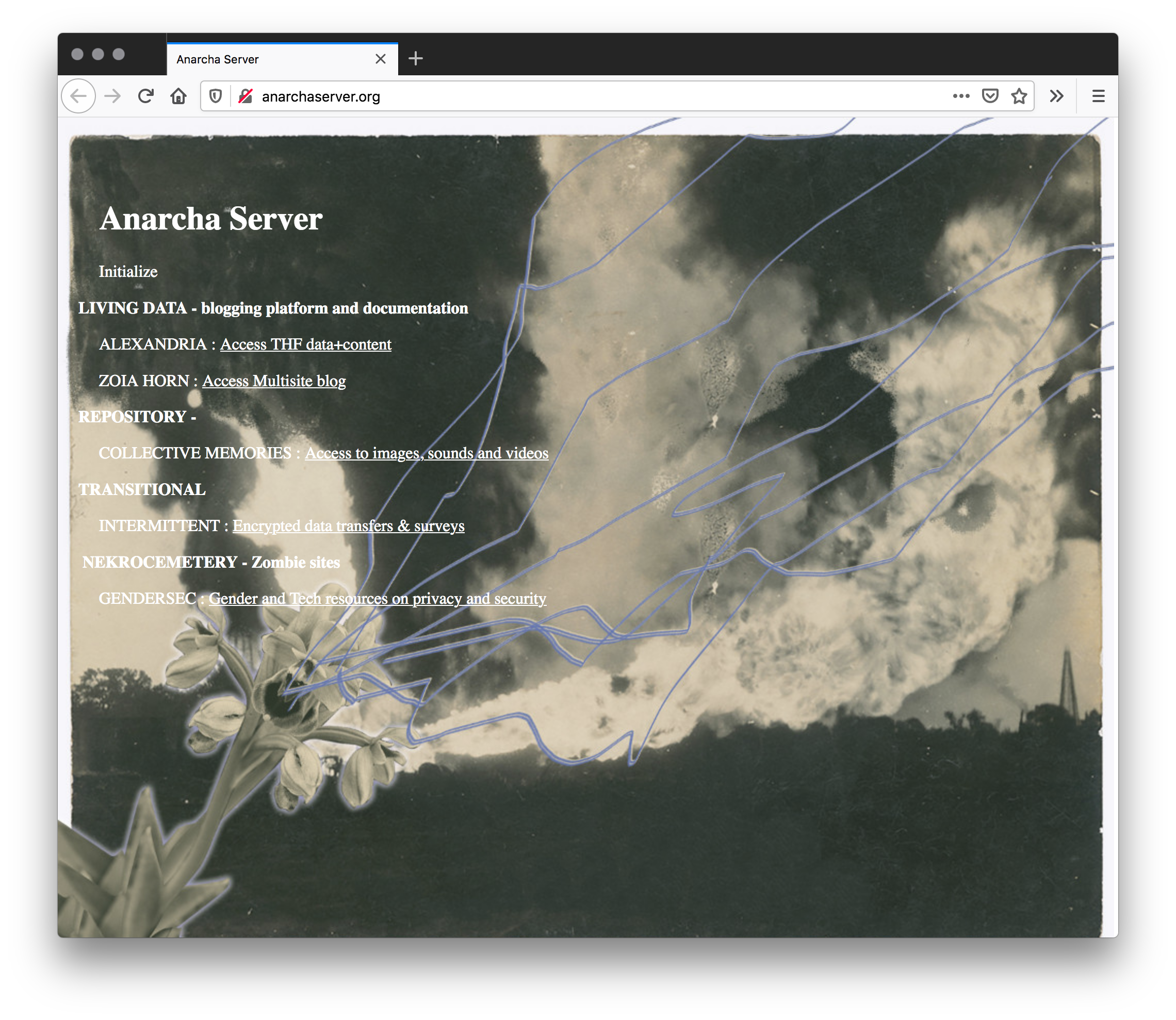
Screenshot, 2020, Firefox v76.0.1 on Mac OS 10.13.3; http://anarchaserver.org/
Anarcha was an African American slave woman. […] She regularly underwent surgical experiments, while positioned on Sims’s table, squatting on all fours, and fully awake without the comfort of any anesthesia. […] She, Betsey, Lucy, and countless others helped Dr Sims hone his techniques and create his gynecological tools. […] Anarcha, Betsey, and Lucy left no written legacy. […] And though science today looks back on Sims’s work ambiguously, truly unsure as to his level of success, or whether he should be credited as the father of gynecology, we now know who the mothers of modern gynecology were: […] Anarcha, Betsey, and Lucy. It is our hope that these names will never be forgotten. […]
Feminist servers [aim to create] a more autonomous infrastructure to ensure that data, projects and memory of feminist groups are properly accessible, preserved and managed. The need for feminist servers is a response to: the unethical practices of multinational ICT companies acting as moral and hypocrite censors; gender based online violence in the form of trolling and hateful misogynist harassing feminist or women activists online and offline; the centralization of the internet and its transformation into a consumption sanctuary and a space of surveillance, control and tracking of dissent voices by government agencies among others.
2013, http://anarchaserver.org/; excerpt from “History of Anarchaservers and Feminist Servers,” Anarchaserver,” https://alexandria.anarchaserver.org/index.php/History_of_Anarchaserver_and_Feminists_Servers_visit_this_section; referred by Klau Chinche (Klau Kinky)
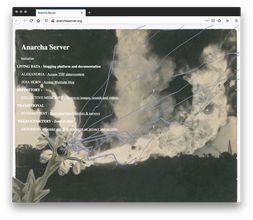
Screenshot, 2020, Firefox v76.0.1 on Mac OS 10.13.3; http://anarchaserver.org/
(429)
2013
TRANS TECHNOLOGY: Circuits of Culture, Self, Belonging
Christina Dunbar-Hester and Bryce J. Renninger
Trans Technology is an exhibit of technological art and artifacts that engage in trans, queer and feminist projects that help to trans (to use the word as a verb: spanning; interrogating; crossing; fusing) conceptions of the heterosexual matrix in technology. We are interested in the contributions of trans, queer, and feminist studies on technology, but in particular on the ways that transgender studies has approached (as Susan Stryker identifies it in the introduction to the Transgender Studies Reader) the recent “sea change in the academic study of gender, sex, sexuality, identity, desire, and embodiment” and the attendant address of trans studies’ “relationships with prior gay, lesbian, and feminist scholarship.” In the field commonly referred to as feminist science studies, recent attention has been placed on the modifier trans as it applies not only to gender but humanness, specieshood, and nationality. With artists of all gender identities, the focus of objects in the exhibit is on interventions in the heterosexual matrix, new gendered circuits of culture, self, and belonging.
2013, Christina Dunbar-Hester and Bryce J. Renninger (New Brunswick, NJ: Rutgers Institute for Women and Art, 2013), exhibition catalogue; excerpt from Christina Dunbar-Hester and Bryce J. Renninger, “TRANS TECHNOLOGY: Circuits of Culture, Self, Belonging,” in Dunbar-Hester and Renninger, TRANS TECHNOLOGY, p. 8; submitted by Christina Dunbar-Hester
https://rucore.libraries.rutgers.edu/rutgers-lib/59663/ https://rucore.libraries.rutgers.edu/rutgers-lib/59663/PDF/1/play/
Trans Technology is an exhibit of technological art and artifacts that engage in trans, queer and feminist projects that help to trans (to use the word as a verb: spanning; interrogating; crossing; fusing) conceptions of the heterosexual matrix in technology. We are interested in the contributions of trans, queer, and feminist studies on technology, but in particular on the ways that transgender studies has approached (as Susan Stryker identifies it in the introduction to the Transgender Studies Reader) the recent “sea change in the academic study of gender, sex, sexuality, identity, desire, and embodiment” and the attendant address of trans studies’ “relationships with prior gay, lesbian, and feminist scholarship.” In the field commonly referred to as feminist science studies, recent attention has been placed on the modifier trans as it applies not only to gender but humanness, specieshood, and nationality. With artists of all gender identities, the focus of objects in the exhibit is on interventions in the heterosexual matrix, new gendered circuits of culture, self, and belonging.
2013, Christina Dunbar-Hester and Bryce J. Renninger (New Brunswick, NJ: Rutgers Institute for Women and Art, 2013), exhibition catalogue; excerpt from Christina Dunbar-Hester and Bryce J. Renninger, “TRANS TECHNOLOGY: Circuits of Culture, Self, Belonging,” in Dunbar-Hester and Renninger, TRANS TECHNOLOGY, p. 8; submitted by Christina Dunbar-Hester
https://rucore.libraries.rutgers.edu/rutgers-lib/59663/ https://rucore.libraries.rutgers.edu/rutgers-lib/59663/PDF/1/play/
(430)
2013
Elsewhere, After the Flood: Glitch Feminism and the Genesis of Glitch Body Politic
Legacy Russell
I first began to realize the potentiality of my glitch body at the age of thirteen. If not thirteen, maybe even a few years younger—eleven, even—when I signed up on Yahoo! under the handle of “LuvPunk12” and began fucking around online. When I say “fucking” I mean it in the literal sense. I lost my digital cherry to a person with the handle of Jephthah, ironically, while my parents made spaghetti marinara in the next room of our tiny studio apartment. […]
As a kid, I could be a teenager. As a teenager, I could be a woman. As a woman, I could be a man. As a man, I could be a cyborg (thanks, Haraway). Shape-shifting between all of these projected selves, I could forget that I was a browned queering body that, in being born and ejected into the world, had had femininity forced upon it by the unforgiving mores of sociality. Trying on these different corporeal conceptions, I came to redress—and undress—the fictive illusions of sex and gender.
2013, Legacy Russell, Rhizome, March 12, 2013, https://rhizome.org/editorial/2013/mar/12/glitch-body-politic/
https://www.legacyrussell.com/GLITCHFEMINISM
I first began to realize the potentiality of my glitch body at the age of thirteen. If not thirteen, maybe even a few years younger—eleven, even—when I signed up on Yahoo! under the handle of “LuvPunk12” and began fucking around online. When I say “fucking” I mean it in the literal sense. I lost my digital cherry to a person with the handle of Jephthah, ironically, while my parents made spaghetti marinara in the next room of our tiny studio apartment. […]
As a kid, I could be a teenager. As a teenager, I could be a woman. As a woman, I could be a man. As a man, I could be a cyborg (thanks, Haraway). Shape-shifting between all of these projected selves, I could forget that I was a browned queering body that, in being born and ejected into the world, had had femininity forced upon it by the unforgiving mores of sociality. Trying on these different corporeal conceptions, I came to redress—and undress—the fictive illusions of sex and gender.
2013, Legacy Russell, Rhizome, March 12, 2013, https://rhizome.org/editorial/2013/mar/12/glitch-body-politic/
https://www.legacyrussell.com/GLITCHFEMINISM
(431)
2014
“We Are the Future Cunt”: CyberFeminism in the 90s
Claire L. Evans
What can we learn from the activists, intellectuals, prophets and weirdos of first wave Internet cyberculture? We lionize Stewart Brand, Lawrence Lessig, and their fellows (and rightly so) but we seem to have forgotten those who took stances that turned out unfashionable, made predictions which proved irrelevant, or spoke for voices that never quite found purchase online.
We need to remember CyberFeminism. We need to draw VNS Matrix up from the depths and inject a little into our veins. It’s good medicine. These women’s voices—weird, angry, hilarious, and staunchly defiant of the (Big Daddy) Mainframe—are sorely missing from today’s many fractured conversations about feminism in online spaces. For every screed about “ethics in gaming journalism,” for every dismissal of women’s legitimate grievances about their portrayal in gaming or treatment in online comment sections, for every death threat or doxxing attempt lodged against a woman online, I long for the howling future cunts to come along and rattle some sense into the servers.
2014, Claire L. Evans, Vice, November 20, 2014, https://www.vice.com/en/article/4x37gb/we-are-the-future-cunt-cyberfeminism-in-the-90s
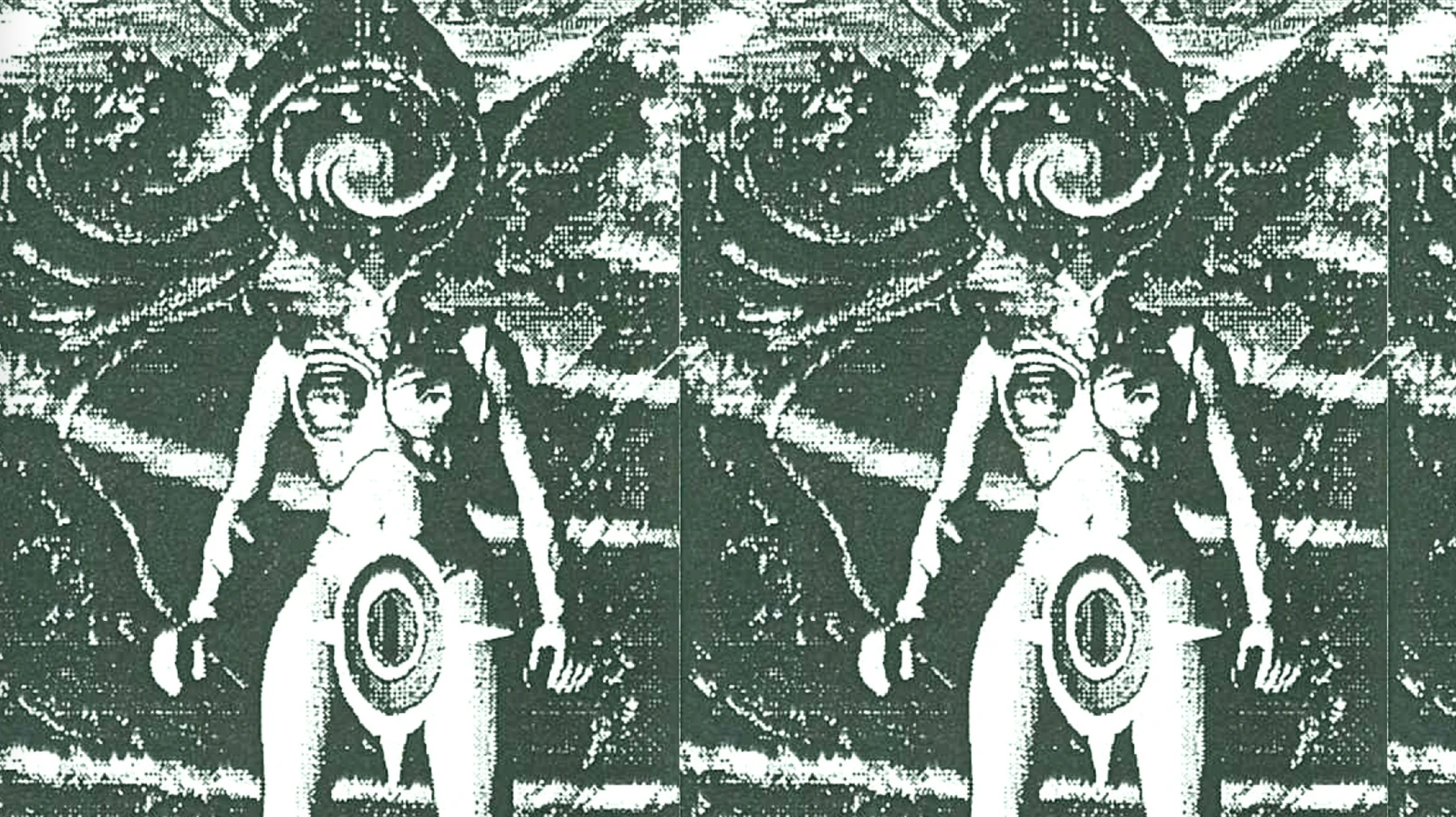
header image from Motherboard article
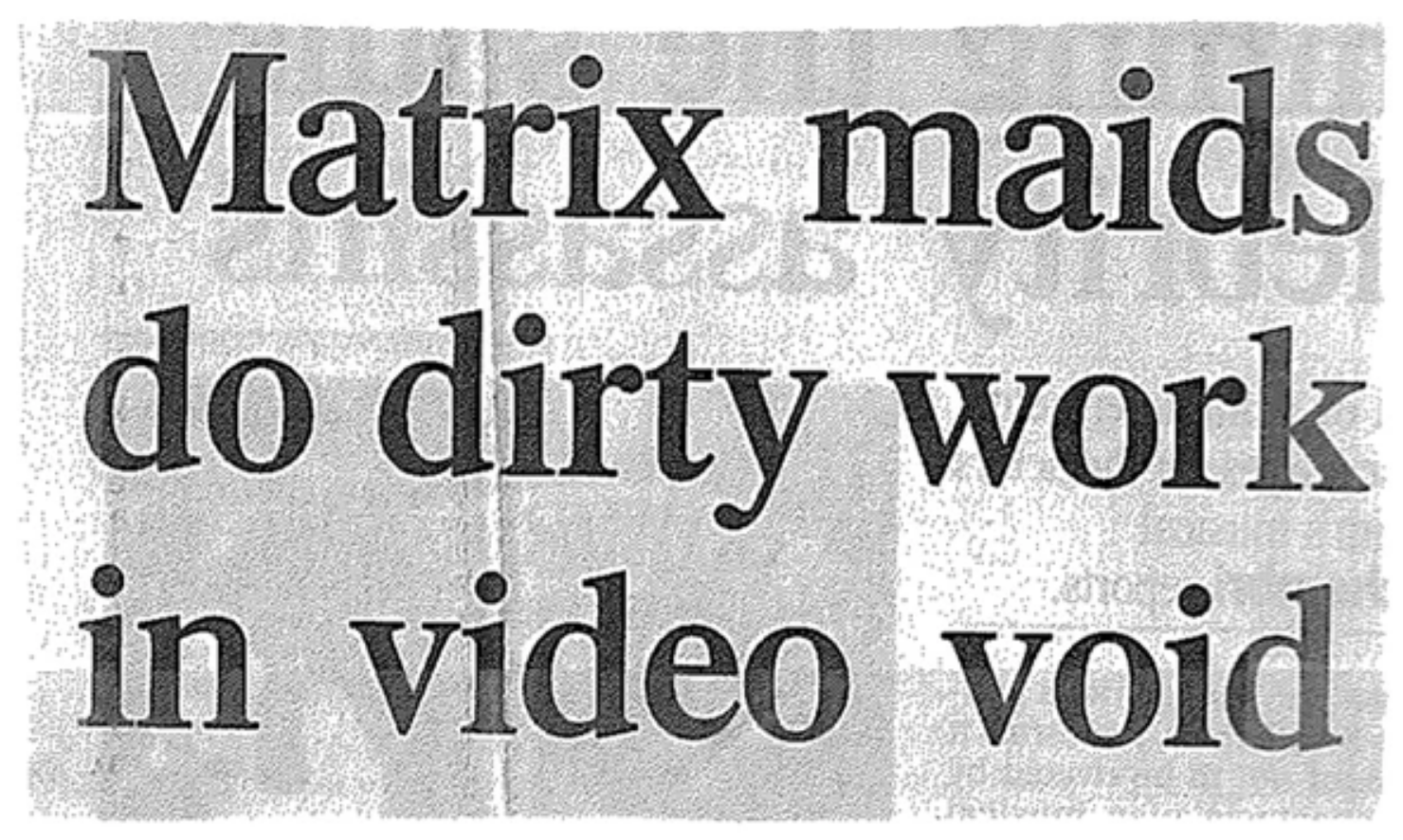
“Headline from Australian newspaper The Age, about VNS Matrix, 1995.”
What can we learn from the activists, intellectuals, prophets and weirdos of first wave Internet cyberculture? We lionize Stewart Brand, Lawrence Lessig, and their fellows (and rightly so) but we seem to have forgotten those who took stances that turned out unfashionable, made predictions which proved irrelevant, or spoke for voices that never quite found purchase online.
We need to remember CyberFeminism. We need to draw VNS Matrix up from the depths and inject a little into our veins. It’s good medicine. These women’s voices—weird, angry, hilarious, and staunchly defiant of the (Big Daddy) Mainframe—are sorely missing from today’s many fractured conversations about feminism in online spaces. For every screed about “ethics in gaming journalism,” for every dismissal of women’s legitimate grievances about their portrayal in gaming or treatment in online comment sections, for every death threat or doxxing attempt lodged against a woman online, I long for the howling future cunts to come along and rattle some sense into the servers.
2014, Claire L. Evans, Vice, November 20, 2014, https://www.vice.com/en/article/4x37gb/we-are-the-future-cunt-cyberfeminism-in-the-90s
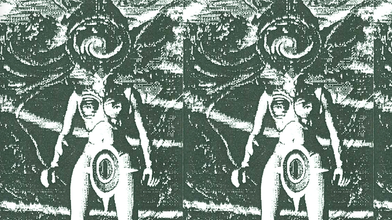
header image from Motherboard article
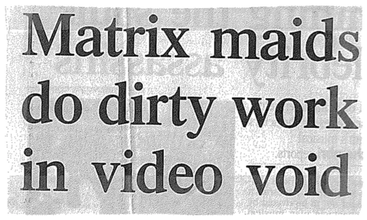
“Headline from Australian newspaper The Age, about VNS Matrix, 1995.”
(432)
2014
Artificial Intelligence in the Age of Sexual Reproduction: Sketches for Xenofeminism
Olivia Lucca Fraser
The notion of artificial general intelligence has taken on an almost mythic significance in accelerationist discourse, both left and right. I will try to analyze and plot this notion’s political coordinates, in a space that has, with somewhat different and sometimes conflicting ends, been mapped out by cyberfeminist research (by Alison Adam and Sarah Kember, for instance). The idea that artificial intelligence seems to crystallize, for many accelerationists, is something like an “emancipation of intelligence,” as Nick Land once put it. The forking of accelerationism into the left and right spectra can be seen as so many ways of articulating this idea and forging it into a programme: whether in the form of a neoreactionary demand for private exit (AGI as a line of flight), or the form of a cybersocialist push towards the rational social cognition (AGI as Geist).
2014, Olivia Lucca Fraser, Glass Bead, September 29, 2014, http://www.glass-bead.org/audio-research/olivia-lucca-fraser/?lang=enview
The notion of artificial general intelligence has taken on an almost mythic significance in accelerationist discourse, both left and right. I will try to analyze and plot this notion’s political coordinates, in a space that has, with somewhat different and sometimes conflicting ends, been mapped out by cyberfeminist research (by Alison Adam and Sarah Kember, for instance). The idea that artificial intelligence seems to crystallize, for many accelerationists, is something like an “emancipation of intelligence,” as Nick Land once put it. The forking of accelerationism into the left and right spectra can be seen as so many ways of articulating this idea and forging it into a programme: whether in the form of a neoreactionary demand for private exit (AGI as a line of flight), or the form of a cybersocialist push towards the rational social cognition (AGI as Geist).
2014, Olivia Lucca Fraser, Glass Bead, September 29, 2014, http://www.glass-bead.org/audio-research/olivia-lucca-fraser/?lang=enview
(433)
2014
Model View Culture
Shanley Kane
Model View Culture is an independent media platform covering technology, culture and diversity. Model View Culture publishes the original work of technologists, activists, writers, educators and artists. It aims to present compelling cultural and social critique, highlight the work and achievement of diverse communities in tech, and explore the use of technology for social justice.
Model View Culture is an independent media platform covering technology, culture and diversity. Model View Culture publishes the original work of technologists, activists, writers, educators and artists. It aims to present compelling cultural and social critique, highlight the work and achievement of diverse communities in tech, and explore the use of technology for social justice.
(434)
2014
About Feminism
Divya Manian, Jessica Dillon, Sabrina Majeed, Joanne McNeil, Sara J. Chipps, Kat Li, Ellen Chisa, Jennifer Brook, Angelina Fabbro
A group of nine women involved in the tech industry have posted a manifesto listing some of the awful sexist things that have happened in tech during the past few months. The women frame this as a simple statement: “we really just want to work on what we love.” But the reality of the industry and the societies in which we do our tech work make this far from simple. […] Some of us identified as feminists before we came to this industry. Some of us only began to understand the relevance of feminism as we sought to understand what’s been happening to us. Some of us felt that we didn’t need the programs and events geared specifically towards women—until the bad stuff started happening to us. We thought they did more harm than help by calling attention to our gender, and we wondered what others were complaining about. It was hard to see until we suffered also.
2014, Divya Manian, Jessica Dillon, Sabrina Majeed, Joanne McNeil, Sara J. Chipps, Kat Li, Ellen Chisa, Jennifer Brook, and Angelina Fabbro, http://aboutfeminism.me/
A group of nine women involved in the tech industry have posted a manifesto listing some of the awful sexist things that have happened in tech during the past few months. The women frame this as a simple statement: “we really just want to work on what we love.” But the reality of the industry and the societies in which we do our tech work make this far from simple. […] Some of us identified as feminists before we came to this industry. Some of us only began to understand the relevance of feminism as we sought to understand what’s been happening to us. Some of us felt that we didn’t need the programs and events geared specifically towards women—until the bad stuff started happening to us. We thought they did more harm than help by calling attention to our gender, and we wondered what others were complaining about. It was hard to see until we suffered also.
2014, Divya Manian, Jessica Dillon, Sabrina Majeed, Joanne McNeil, Sara J. Chipps, Kat Li, Ellen Chisa, Jennifer Brook, and Angelina Fabbro, http://aboutfeminism.me/
(435)
2014
Queer OS
Kara Keeling
Inspired by [Tara] McPherson’s analysis of Unix in the context of US racial formation, Queer OS seeks to make queer into the logic of “an operating system of a larger order” that unsettles the common senses that secure those presently hegemonic social relations that can be characterized by domination, exploitation, oppression, and other violences. While it is worth noting here that my references to “the commons” are in critical conversation with existing formulations of the “digital commons,” an aim of Queer OS vis-à-vis conceptualizations of commons is to provide a society-level oper-ating system (and perhaps an operating system that can run on computer hardware) to facilitate and support imaginative, unexpected, and ethical relations between and among living beings and the environment, even when they have little, and perhaps nothing, in common.
2014, Kara Keeling, Cinema Journal 53, no. 2 (Winter 2014): p. 152–157; excerpt p. 154
https://www.are.na/block/3066354 https://muse.jhu.edu/article/535715
Inspired by [Tara] McPherson’s analysis of Unix in the context of US racial formation, Queer OS seeks to make queer into the logic of “an operating system of a larger order” that unsettles the common senses that secure those presently hegemonic social relations that can be characterized by domination, exploitation, oppression, and other violences. While it is worth noting here that my references to “the commons” are in critical conversation with existing formulations of the “digital commons,” an aim of Queer OS vis-à-vis conceptualizations of commons is to provide a society-level oper-ating system (and perhaps an operating system that can run on computer hardware) to facilitate and support imaginative, unexpected, and ethical relations between and among living beings and the environment, even when they have little, and perhaps nothing, in common.
2014, Kara Keeling, Cinema Journal 53, no. 2 (Winter 2014): p. 152–157; excerpt p. 154
https://www.are.na/block/3066354 https://muse.jhu.edu/article/535715
(436)
2014–
2016
Feminist Principles of the Internet
The Feminist Principles of the Internet are a series of statements that offer a gender and sexual rights lens on critical internet-related rights. They were drafted at the first Imagine a Feminist Internet meeting that took place in Malaysia in April 2014. The meeting was organised by the Association for Progressive Communications (APC) and brought together 50 activists and advocates working in sexual rights, women’s rights, violence against women, and internet rights. The meeting was designed as an adapted open space where topics were identified, prioritized, and discussed collectively.
The Feminist Principles of the Internet are a series of statements that offer a gender and sexual rights lens on critical internet-related rights. They were drafted at the first Imagine a Feminist Internet meeting that took place in Malaysia in April 2014. The meeting was organised by the Association for Progressive Communications (APC) and brought together 50 activists and advocates working in sexual rights, women’s rights, violence against women, and internet rights. The meeting was designed as an adapted open space where topics were identified, prioritized, and discussed collectively.
(437)
2014
#ImagineaFeministInternet
In April 2014, the Association for Progressive Communications, APC, organized a Global Meeting on Gender, Sexuality and the Internet in Port Dickson, Malaysia, bringing together 50 participants from six continents comprising gender and women’s rights activists, LGBTQI (lesbian, gay, bisexual, trans and intersex) movements, internet and technology rights organizations, and human rights advocates. The goal of the meeting was to bridge the gap between feminist movements and internet rights movements and look at intersections and strategic opportunities to work together as allies and partners.
2014, Association for Progressive Communications, organizers (gathering, Port Dickson, Malaysia, April 13–15, 2014); excerpt from “Feminist Principles of the Internet,” GenderIT.org, August 20, 2014, https://www.genderit.org/articles/feminist-principles-internet
Malaysia
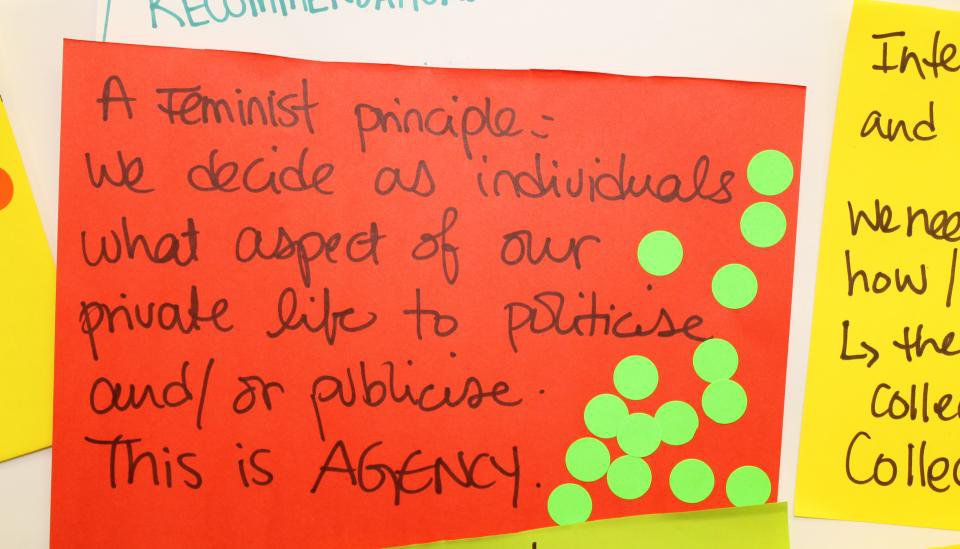
Image by Rohini Lakshané, https://www.genderit.org/articles/feminist-principles-internet
In April 2014, the Association for Progressive Communications, APC, organized a Global Meeting on Gender, Sexuality and the Internet in Port Dickson, Malaysia, bringing together 50 participants from six continents comprising gender and women’s rights activists, LGBTQI (lesbian, gay, bisexual, trans and intersex) movements, internet and technology rights organizations, and human rights advocates. The goal of the meeting was to bridge the gap between feminist movements and internet rights movements and look at intersections and strategic opportunities to work together as allies and partners.
2014, Association for Progressive Communications, organizers (gathering, Port Dickson, Malaysia, April 13–15, 2014); excerpt from “Feminist Principles of the Internet,” GenderIT.org, August 20, 2014, https://www.genderit.org/articles/feminist-principles-internet
Malaysia

Image by Rohini Lakshané, https://www.genderit.org/articles/feminist-principles-internet
(438)
2014
New Topics in Social Computing: Emotional Labor and Affective Computing
Joanne McNeil, Sarah Jaffe, Lauren McCarthy, Sabrina Majeed
This discussion will consider topics related to what MIT professor Rosalind Picard calls ‘affective computing,’ emotion recognition in artificial intelligence and the use of technology to simulate empathy or respond to mood. Sensors in automobiles might respond to a stressed out driver with softer light or upbeat music. Commercial surveillance applications increasingly measure facial movements to profile the reactions of customers. Meanwhile data is collected on social networks for engineering relationships. A team of social media researchers recently proposed an ‘early breakup warning system’ for Twitter that is possible with just public available data. Affective computing is automating the largely undervalued and often gendered work known as ‘emotional labor.’ A nanny, waitress, community manager, journalist, administrator assistant, or counselor is subject to the fallacious conflation of ‘doing what she loves‘ and labor, and therefore often underpaid for her services. Attempts to automate care work could reveal the complexity and difficulty of professions that demand social intelligence, expressive emotion, and creativity.
2014, Joanne McNeil, Sarah Jaffe, Lauren McCarthy, and Sabrina Majeed (panel presentation, Eyebeam, New York, NY, November 3, 2014); excerpt from “New Topics in Social Computing: Emotional Labor and Affective Computing,” Eyebeam, https://www.eyebeam.org/events/new-topics-in-social-computing-emotional-labor-and-affective-computing/
This discussion will consider topics related to what MIT professor Rosalind Picard calls ‘affective computing,’ emotion recognition in artificial intelligence and the use of technology to simulate empathy or respond to mood. Sensors in automobiles might respond to a stressed out driver with softer light or upbeat music. Commercial surveillance applications increasingly measure facial movements to profile the reactions of customers. Meanwhile data is collected on social networks for engineering relationships. A team of social media researchers recently proposed an ‘early breakup warning system’ for Twitter that is possible with just public available data. Affective computing is automating the largely undervalued and often gendered work known as ‘emotional labor.’ A nanny, waitress, community manager, journalist, administrator assistant, or counselor is subject to the fallacious conflation of ‘doing what she loves‘ and labor, and therefore often underpaid for her services. Attempts to automate care work could reveal the complexity and difficulty of professions that demand social intelligence, expressive emotion, and creativity.
2014, Joanne McNeil, Sarah Jaffe, Lauren McCarthy, and Sabrina Majeed (panel presentation, Eyebeam, New York, NY, November 3, 2014); excerpt from “New Topics in Social Computing: Emotional Labor and Affective Computing,” Eyebeam, https://www.eyebeam.org/events/new-topics-in-social-computing-emotional-labor-and-affective-computing/
(439)
2014
Laboria Cuboniks
Diann Bauer, Katrina Burch, Lucca Fraser, Helen Hester, Amy Ireland, Patricia Reed
Laboria Cuboniks (b. 2014) is a xenofeminist working group, spread across four countries and three continents. She seeks to dismantle gender and do away with nature as a guarantor for inegalitarian political positions. Her name is an anagram of “Nicolas Bourbaki,” a pseudonym under which a group of largely French mathematicians who worked towards an affirmation of abstraction, generality and rigor in mathematics in the early twentieth century.
2014, Diann Bauer, Katrina Burch, Lucca Fraser, Helen Hester, Amy Ireland, and Patricia Reed, https://laboriacuboniks.net/
https://monoskop.org/Laboria_Cuboniks

Screenshot, 2020, Firefox v76.0.1 on Mac OS 10.13.3; https://laboriacuboniks.net/
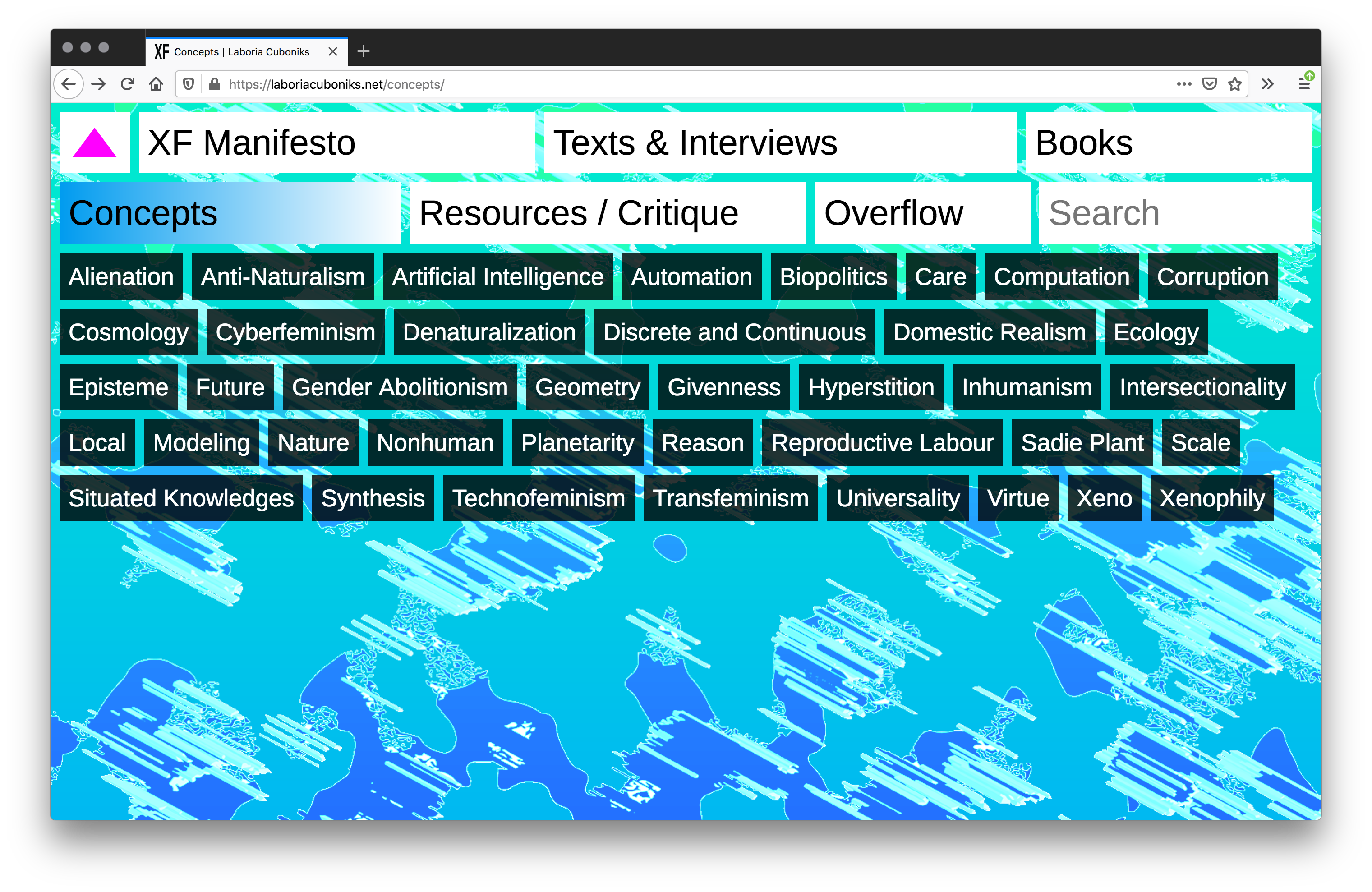
Screenshot, 2020, Firefox v76.0.1 on Mac OS 10.13.3; https://laboriacuboniks.net/concepts

Screenshot, 2020, Firefox v76.0.1 on Mac OS 10.13.3; https://laboriacuboniks.net/texts-interviews
Laboria Cuboniks (b. 2014) is a xenofeminist working group, spread across four countries and three continents. She seeks to dismantle gender and do away with nature as a guarantor for inegalitarian political positions. Her name is an anagram of “Nicolas Bourbaki,” a pseudonym under which a group of largely French mathematicians who worked towards an affirmation of abstraction, generality and rigor in mathematics in the early twentieth century.
2014, Diann Bauer, Katrina Burch, Lucca Fraser, Helen Hester, Amy Ireland, and Patricia Reed, https://laboriacuboniks.net/
https://monoskop.org/Laboria_Cuboniks

Screenshot, 2020, Firefox v76.0.1 on Mac OS 10.13.3; https://laboriacuboniks.net/
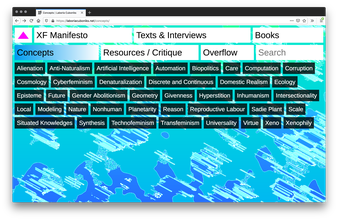
Screenshot, 2020, Firefox v76.0.1 on Mac OS 10.13.3; https://laboriacuboniks.net/concepts
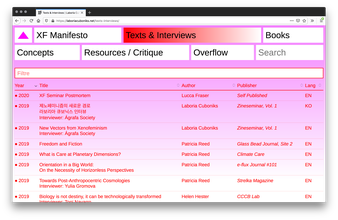
Screenshot, 2020, Firefox v76.0.1 on Mac OS 10.13.3; https://laboriacuboniks.net/texts-interviews
(440)
2014
Gender and Tech Institute
Tactical Tech
Every day, women face the consequences of online harassment and hate speech as a result of their gender identity and their environment. In this context, Tactical Tech’s Gender and Tech project has spent the last four years working toward giving women, specifically in Latin America, the technical skills and practical know-how to teach one another and create their own networks.
A significant part of this project was the Gender and Technology Institutes, a series of events orientated towards women human rights defenders to address the risks, attacks and contexts faced by activist women in these regions and help them build capacity in their local communities. They took place between 2014 and 2018 in Germany, Nicaragua, Ecuador, Spain, Panama, Skri Lanka, Malaysia, Mexico and Uruguay.
2014, Tactical Tech, https://tacticaltech.org/projects/gender-and-tech-institute-2014-/
Every day, women face the consequences of online harassment and hate speech as a result of their gender identity and their environment. In this context, Tactical Tech’s Gender and Tech project has spent the last four years working toward giving women, specifically in Latin America, the technical skills and practical know-how to teach one another and create their own networks.
A significant part of this project was the Gender and Technology Institutes, a series of events orientated towards women human rights defenders to address the risks, attacks and contexts faced by activist women in these regions and help them build capacity in their local communities. They took place between 2014 and 2018 in Germany, Nicaragua, Ecuador, Spain, Panama, Skri Lanka, Malaysia, Mexico and Uruguay.
2014, Tactical Tech, https://tacticaltech.org/projects/gender-and-tech-institute-2014-/
(441)
2014
Blackgirl.tech
Lola Odelola, Rebecca Francis
blackgirl.tech started in 2014 as an organization that aimed to provide a safe space for Black girls and women in the tech industry and those coming into the tech industry. Since then, it has grown into a social enterprise that not only provides a safe space for Black women, but that aims to make tech a safer space for Black women and girls. The goal of blackgirl.tech isn’t to make everyone a coder but to introduce coding to those who may have never been exposed and to create an environment that fosters sharing, learning and growth.
2014, Lola Odelola and Rebecca Francis, https://web.archive.org/web/20180110135215/https://home.blackgirl.tech/
blackgirl.tech started in 2014 as an organization that aimed to provide a safe space for Black girls and women in the tech industry and those coming into the tech industry. Since then, it has grown into a social enterprise that not only provides a safe space for Black women, but that aims to make tech a safer space for Black women and girls. The goal of blackgirl.tech isn’t to make everyone a coder but to introduce coding to those who may have never been exposed and to create an environment that fosters sharing, learning and growth.
2014, Lola Odelola and Rebecca Francis, https://web.archive.org/web/20180110135215/https://home.blackgirl.tech/
(442)
2014
POWRPLNT
Angelina Dreem, Anibal Luque
Luque and Dreem met via craigslist rideshare to a music festival, an apt beginning for POWRPLNT’s vision: creating a bridge between IRL and URL communities. After months of brainstorming and due diligence, the two finally formed the grounding ethos of POWRPLNT. The goal was to launch a digital art space for the next generation of creators. POWRPLNT connects teens with established artists on free, interest-driven digital art projects and educational programs. We advocate that access to technology is a right, not a privilege. Our DIY style art space welcomes participants of all ages to our workshops on the techniques, tools, and history of new media art. Our plant-filled gallery is also a venue for art events and musical performances highlighting emerging artists and underrepresented visionaries.
2014, Angelina Dreem and Anibal Luque, https://www.powrplnt.org/
Luque and Dreem met via craigslist rideshare to a music festival, an apt beginning for POWRPLNT’s vision: creating a bridge between IRL and URL communities. After months of brainstorming and due diligence, the two finally formed the grounding ethos of POWRPLNT. The goal was to launch a digital art space for the next generation of creators. POWRPLNT connects teens with established artists on free, interest-driven digital art projects and educational programs. We advocate that access to technology is a right, not a privilege. Our DIY style art space welcomes participants of all ages to our workshops on the techniques, tools, and history of new media art. Our plant-filled gallery is also a venue for art events and musical performances highlighting emerging artists and underrepresented visionaries.
2014, Angelina Dreem and Anibal Luque, https://www.powrplnt.org/
(443)
2014
Virtual Homelands: Indian Immigrants and Online Cultures in the United States
Madhavi Mallapragada
[I emphasize] the idea of home, and its many reconfigurations online through the concept of the homepage. […] As web interfaces have evolved over the last two decades, and websites have embraced ever-newer designs and technologies to craft their online identities, the concept of the homepage continues to be the key locus for negotiating the changing spaces of the public and the private. […] Therefore, when the homepage is strategically mobilized in online media […] to reproduce conservative narrative of unchanging homeland for Indian immigrants in the United States, the political, economic, cultural, and technological investments of the sites in question go beyond their textual and hypertext elements. […] For instance, while Indian Americans have rarely found visibility in mainstream American television and film, they have been making their presence felt online since the earliest years of the Web.
2014, Madhavi Mallapragada (Champaign, IL: University of Illinois Press, 2014); excerpt pp. 1, 5–6
https://www.press.uillinois.edu/books/catalog/63hqw5fs9780252038631.html
[I emphasize] the idea of home, and its many reconfigurations online through the concept of the homepage. […] As web interfaces have evolved over the last two decades, and websites have embraced ever-newer designs and technologies to craft their online identities, the concept of the homepage continues to be the key locus for negotiating the changing spaces of the public and the private. […] Therefore, when the homepage is strategically mobilized in online media […] to reproduce conservative narrative of unchanging homeland for Indian immigrants in the United States, the political, economic, cultural, and technological investments of the sites in question go beyond their textual and hypertext elements. […] For instance, while Indian Americans have rarely found visibility in mainstream American television and film, they have been making their presence felt online since the earliest years of the Web.
2014, Madhavi Mallapragada (Champaign, IL: University of Illinois Press, 2014); excerpt pp. 1, 5–6
https://www.press.uillinois.edu/books/catalog/63hqw5fs9780252038631.html
(444)
2014
Sonic Cyberfeminisms and Its Discontents
Annie Goh
Yet amidst this laudable enthusiasm for women pioneers, an article by Abi Bliss in The Wire Magazine in April 2013 describes a problem lurking here too; putting these composers and inventors on pedestals runs the risk of creating myths of what she jokingly yet aptly refers to as “patchbay nuns,” nurturing a fetishization of the black and white photos of women standing in front of vintage synthesizers and handling these typically male-dominated electronic machines. This now-familiar narrative, whilst commendably creating positive female role models, is problematic in a different way; it relegates women into performing certain roles and raises them as curious exceptions within the dominant narrative of history. Anecdotes by women DJs and musicians, ranging from amusingly pathetic to morally repulsive, testify to the worrying perpetuation of similar opinions in many supposedly “forward-thinking” fields.
2014, Annie Goh, CTM Festival Magazine (2014): pp. 56–58; excerpt p. 57
https://www.are.na/block/7787201 https://www.academia.edu/24027786/Sonic_Cyberfeminism_and_Its_Discontents
Yet amidst this laudable enthusiasm for women pioneers, an article by Abi Bliss in The Wire Magazine in April 2013 describes a problem lurking here too; putting these composers and inventors on pedestals runs the risk of creating myths of what she jokingly yet aptly refers to as “patchbay nuns,” nurturing a fetishization of the black and white photos of women standing in front of vintage synthesizers and handling these typically male-dominated electronic machines. This now-familiar narrative, whilst commendably creating positive female role models, is problematic in a different way; it relegates women into performing certain roles and raises them as curious exceptions within the dominant narrative of history. Anecdotes by women DJs and musicians, ranging from amusingly pathetic to morally repulsive, testify to the worrying perpetuation of similar opinions in many supposedly “forward-thinking” fields.
2014, Annie Goh, CTM Festival Magazine (2014): pp. 56–58; excerpt p. 57
https://www.are.na/block/7787201 https://www.academia.edu/24027786/Sonic_Cyberfeminism_and_Its_Discontents
(445)
2014
Hypertext of HerMe(s)
Judy Freya Sibayan
“In this ebook, Judy Freya Sibayan reflects on 39 years of her work as an artist, curator, writer, editor of Ctrl+P and teacher. Inspired by Hélène Cixous, the figure of HerMe(s) is invoked for a new kind of artistic autobiography, hyperlinked to the internet and a practice, evident in major works like Scapular Gallery and Museum of Mental Objects, which developed from her development of a distinctive form of institutional critique. Judy Freya Sibayan is based in the Philippines.” —Summary by the publisher KT Press
https://www.ktpress.co.uk/ebooks-details.asp?bookID=13
“In this ebook, Judy Freya Sibayan reflects on 39 years of her work as an artist, curator, writer, editor of Ctrl+P and teacher. Inspired by Hélène Cixous, the figure of HerMe(s) is invoked for a new kind of artistic autobiography, hyperlinked to the internet and a practice, evident in major works like Scapular Gallery and Museum of Mental Objects, which developed from her development of a distinctive form of institutional critique. Judy Freya Sibayan is based in the Philippines.” —Summary by the publisher KT Press
https://www.ktpress.co.uk/ebooks-details.asp?bookID=13
(446)
2014
“Internet Famous”: Visibility as Violence on Social Media
Shanley Kane
One of the functions of misogynistic terrorism in technology is the creation of highly visible cases of “what happens to women who speak out,” and in fact, to highly visible women in general. This terrorism ranges from highly-publicized, concentrated attacks on women who speak up about sexual assault and harassment, to the frequent public, media-sanctioned attacks on high-ranking women executives.
Women who speak out in tech, who are seen and heard, who succeed—are publicly punished; attacked en masse on male-dominated social platforms, abused and harassed by highly visible men, attacked by anonymous trolls, slandered in the press and relentlessly chased out by management. The tech media contributes to the performance of public punishment by writing about that punishment in dozens or hundreds of click-bait articles, feeding the consumption of womens’ pain devoid of critical analysis or solidarity.
2014, Shanley Kane, Model View Culture, June 30, 2014, https://modelviewculture.com/pieces/internet-famous-visibility-as-violence-on-social-media; discovered in Morehshin Allahyari’s Radical Outside syllabus (x)
One of the functions of misogynistic terrorism in technology is the creation of highly visible cases of “what happens to women who speak out,” and in fact, to highly visible women in general. This terrorism ranges from highly-publicized, concentrated attacks on women who speak up about sexual assault and harassment, to the frequent public, media-sanctioned attacks on high-ranking women executives.
Women who speak out in tech, who are seen and heard, who succeed—are publicly punished; attacked en masse on male-dominated social platforms, abused and harassed by highly visible men, attacked by anonymous trolls, slandered in the press and relentlessly chased out by management. The tech media contributes to the performance of public punishment by writing about that punishment in dozens or hundreds of click-bait articles, feeding the consumption of womens’ pain devoid of critical analysis or solidarity.
2014, Shanley Kane, Model View Culture, June 30, 2014, https://modelviewculture.com/pieces/internet-famous-visibility-as-violence-on-social-media; discovered in Morehshin Allahyari’s Radical Outside syllabus (x)
(447)
2014
Queering Internet Governance in Indonesia
Kamilia Manaf, Dewi Nova Wahyuni, Ikram Baadila
In Indonesia, sexuality has gradually become a more and more open public discourse. Conflict on discourse of sexuality expands through the use of the Internet. On the one hand, Internet has given space to the advancement of Human Rights including Human Rights of Lesbian, Gay, Bi-sexual, Transgender, Intersex and Queer (LGBTIQ). On the other hand, the technology creates a space, which preserves status quo, discrimination and violence against LGBTIQ that has previously been evident in offline spaces. That is, due to the lack of human rights protection of LGBTIQ on Internet governance, as is the lack of security in the same physical space. Harassment and homophobic bullying, which include online delivery of hate speech against the LGBTIQ referred to as cyber-homophobia is among the behaviors appearing in social network and other cyber spaces. The blockade of LGBTIQ websites by several Internet Service Providers (ISP) has been happening since 2011. The act is often a one-sided decision without prior notification to the owner of the website. More often than not, the process is committed by both ISP and the Ministry of Communication and Informatics Republic of Indonesia, without a transparent and accountable consultation to the owner of the website. This is clearly detrimental to any individual or group in an effort to access information about human rights, reproductive rights and sexual rights.
2014, Kamilia Manaf, Dewi Nova Wahyuni, and Ikram Baadila (Jakarta, Indonesia: Institut Pelangi Perempuan, 2014); excerpt p. iv
https://www.are.na/block/7787282 https://www.apc.org/sites/default/files/Queering_Internet_Governance_in_Indonesia_final_research_book_.pdf
Indonesia

artifact from cover of “Queering Internet Governance in Indonesia”
In Indonesia, sexuality has gradually become a more and more open public discourse. Conflict on discourse of sexuality expands through the use of the Internet. On the one hand, Internet has given space to the advancement of Human Rights including Human Rights of Lesbian, Gay, Bi-sexual, Transgender, Intersex and Queer (LGBTIQ). On the other hand, the technology creates a space, which preserves status quo, discrimination and violence against LGBTIQ that has previously been evident in offline spaces. That is, due to the lack of human rights protection of LGBTIQ on Internet governance, as is the lack of security in the same physical space. Harassment and homophobic bullying, which include online delivery of hate speech against the LGBTIQ referred to as cyber-homophobia is among the behaviors appearing in social network and other cyber spaces. The blockade of LGBTIQ websites by several Internet Service Providers (ISP) has been happening since 2011. The act is often a one-sided decision without prior notification to the owner of the website. More often than not, the process is committed by both ISP and the Ministry of Communication and Informatics Republic of Indonesia, without a transparent and accountable consultation to the owner of the website. This is clearly detrimental to any individual or group in an effort to access information about human rights, reproductive rights and sexual rights.
2014, Kamilia Manaf, Dewi Nova Wahyuni, and Ikram Baadila (Jakarta, Indonesia: Institut Pelangi Perempuan, 2014); excerpt p. iv
https://www.are.na/block/7787282 https://www.apc.org/sites/default/files/Queering_Internet_Governance_in_Indonesia_final_research_book_.pdf
Indonesia

artifact from cover of “Queering Internet Governance in Indonesia”
(448)
2014
Framing the Online Women’s Movements in the Arab World
Ahmed Al-Rawi
The events of the Arab Spring led to several reforms in the Arab world and facilitated the creation of feminist movements. Social networking sites such as Facebook were used as tools to promote this kind of online activism and create a collective secular identity for the members of these movements. This study investigated over 220,000 Facebook posts and comments taken from three online feminist movements which supported gender equality in the Arab world. The results show that these movements sometimes face fierce resistance from Islamists who believe that their religion is under attack. Instead of having one type of poster and commentator, three main online groups are identified; each one competes to garner attention and support from the public.
2014, Ahmed Al-Rawi, Information, Communication & Society 17, no. 9 (2014): pp. 1147–1161; excerpt from abstract
https://www.are.na/block/7787295 http://www.academia.edu/6365996/Framing_the_online_womens_movements_in_the_Arab_world
The events of the Arab Spring led to several reforms in the Arab world and facilitated the creation of feminist movements. Social networking sites such as Facebook were used as tools to promote this kind of online activism and create a collective secular identity for the members of these movements. This study investigated over 220,000 Facebook posts and comments taken from three online feminist movements which supported gender equality in the Arab world. The results show that these movements sometimes face fierce resistance from Islamists who believe that their religion is under attack. Instead of having one type of poster and commentator, three main online groups are identified; each one competes to garner attention and support from the public.
2014, Ahmed Al-Rawi, Information, Communication & Society 17, no. 9 (2014): pp. 1147–1161; excerpt from abstract
https://www.are.na/block/7787295 http://www.academia.edu/6365996/Framing_the_online_womens_movements_in_the_Arab_world
(449)
2014
cybertwee
gabriella hileman, violet forest, may waver
cybertwee is an arts collective co-founded in 2014 by artists gabriella hileman, violet forest, and may waver. through cybertwee’s manifesto, facebook group, and other internet-based projects, the collective explores intersections of femininities, feelings, and technology with a focus on community and education.
2014, Gabriella Hileman, Violet Forest, and May Waver, http://cybertwee.net/
cybertwee is an arts collective co-founded in 2014 by artists gabriella hileman, violet forest, and may waver. through cybertwee’s manifesto, facebook group, and other internet-based projects, the collective explores intersections of femininities, feelings, and technology with a focus on community and education.
2014, Gabriella Hileman, Violet Forest, and May Waver, http://cybertwee.net/
(450)
2014
Lady Tech Guild
Ebony Fleur, Carla Diana, Sophie Kahn, Natalia Krasnodebska, Annellie Koller, Laura Taalman, Lauren Slowik, Ashley Zelinskie, Katie Wendt
The Lady Tech Guild is a collective of professional women who are 3D artists, designers, biohackers, educators and entrepreneurs in the 3D industry, with decades of experience and specialized knowledge in our fields. We support like minded girls and women to become resourceful, inspired creative professionals. The Lady Tech Guild empowers women by connecting them to technology, and to each other.
2014, Ebony Fleur, Carla Diana, Sophie Kahn, Natalia Krasnodebska, Annellie Koller, Laura Taalman, Lauren Slowik, Ashley Zelinskie, and Katie Wendt, www.ladytechguild.com

Lady Tech Guild logo, http://ladytechguild.com
The Lady Tech Guild is a collective of professional women who are 3D artists, designers, biohackers, educators and entrepreneurs in the 3D industry, with decades of experience and specialized knowledge in our fields. We support like minded girls and women to become resourceful, inspired creative professionals. The Lady Tech Guild empowers women by connecting them to technology, and to each other.
2014, Ebony Fleur, Carla Diana, Sophie Kahn, Natalia Krasnodebska, Annellie Koller, Laura Taalman, Lauren Slowik, Ashley Zelinskie, and Katie Wendt, www.ladytechguild.com

Lady Tech Guild logo, http://ladytechguild.com
(451)
2014
TransHackFeminist Meet-Up (THF!)
Pechblenda, GynePunk, Calafou
Before embarking on the THF! we believed that to have more feminist and intersectional activists and practitioners at the forefront of the use and development of liberation and (free)dom technologies, safe spaces to ignite desires were a must. Moreover, the THF! aimed at triggering this desire towards transfeminist approaches to technology and hacking that fostered differences, autonomy, liberation and social resistance. To reach out to a wide audience that might not have identified their practice as hacking, we made explicit the two following premises: 1) everybody is an expert in relation to the technologies they use in their everyday life, and 2) as we consider gender to be one of the most pervasive social technologies ever created, we were convinced that everybody had a lot to share on this topic too. Additionally, we wanted to convey the idea that we feel we are at a new dawn where feminist and intersectional technological resistance is arising.
2014, Pechblenda and GynePunk, organizers (gathering, Calafou, Spain, August 4–11, 2014), https://transhackfeminist.noblogs.org/; referred by Klau Chinche (Klau Kinky)
https://repository.anarchaserver.org/picture.php?/276/tags/9-transhackmeeting
Montreal
Before embarking on the THF! we believed that to have more feminist and intersectional activists and practitioners at the forefront of the use and development of liberation and (free)dom technologies, safe spaces to ignite desires were a must. Moreover, the THF! aimed at triggering this desire towards transfeminist approaches to technology and hacking that fostered differences, autonomy, liberation and social resistance. To reach out to a wide audience that might not have identified their practice as hacking, we made explicit the two following premises: 1) everybody is an expert in relation to the technologies they use in their everyday life, and 2) as we consider gender to be one of the most pervasive social technologies ever created, we were convinced that everybody had a lot to share on this topic too. Additionally, we wanted to convey the idea that we feel we are at a new dawn where feminist and intersectional technological resistance is arising.
2014, Pechblenda and GynePunk, organizers (gathering, Calafou, Spain, August 4–11, 2014), https://transhackfeminist.noblogs.org/; referred by Klau Chinche (Klau Kinky)
https://repository.anarchaserver.org/picture.php?/276/tags/9-transhackmeeting
Montreal
(452)
2014–
2016
Deep Lab
Addie Wagenknecht, Allison Burtch, Claire L. Evans, Denise Caruso, Harlo Holmes, Ingrid Burrington, Kate Crawford, Jen Lowe, Julia Kaganskiy, Joana Varon, Jillian C. York, Lindsay Howard, Lorrie Cranor, Madeleine Varner, Maral Pourkazemi, Runa Sandvik, Simone Browne
WE MUST ENGAGE WITH THE FUTURE IN ORDER TO MAKE HISTORY. [WHILE ALL WE HAVE IS THE PRESENT]. //WE ARE NOT ALL HACKERS
Deep Lab is a collaborative group of cyberfeminist researchers, artists, writers, engineers, and cultural producers. Our interests are diverse, and we do not agree on everything. Some of our research includes privacy, surveillance, code, art, social hacking, race, capitalism, anonymity, the infrastructures of the 21st century and useful skills in tangible situations.
2014, Addie Wagenknecht, Allison Burtch, Claire L. Evans, Denise Caruso, Harlo Holmes, Ingrid Burrington, Kate Crawford, Jen Lowe, Julia Kaganskiy, Joana Varon, Jillian C. York, Lindsay Howard, Lorrie Cranor, Madeleine Varner, Maral Pourkazemi, Runa Sandvik, and Simone Browne, http://www.deeplab.net/
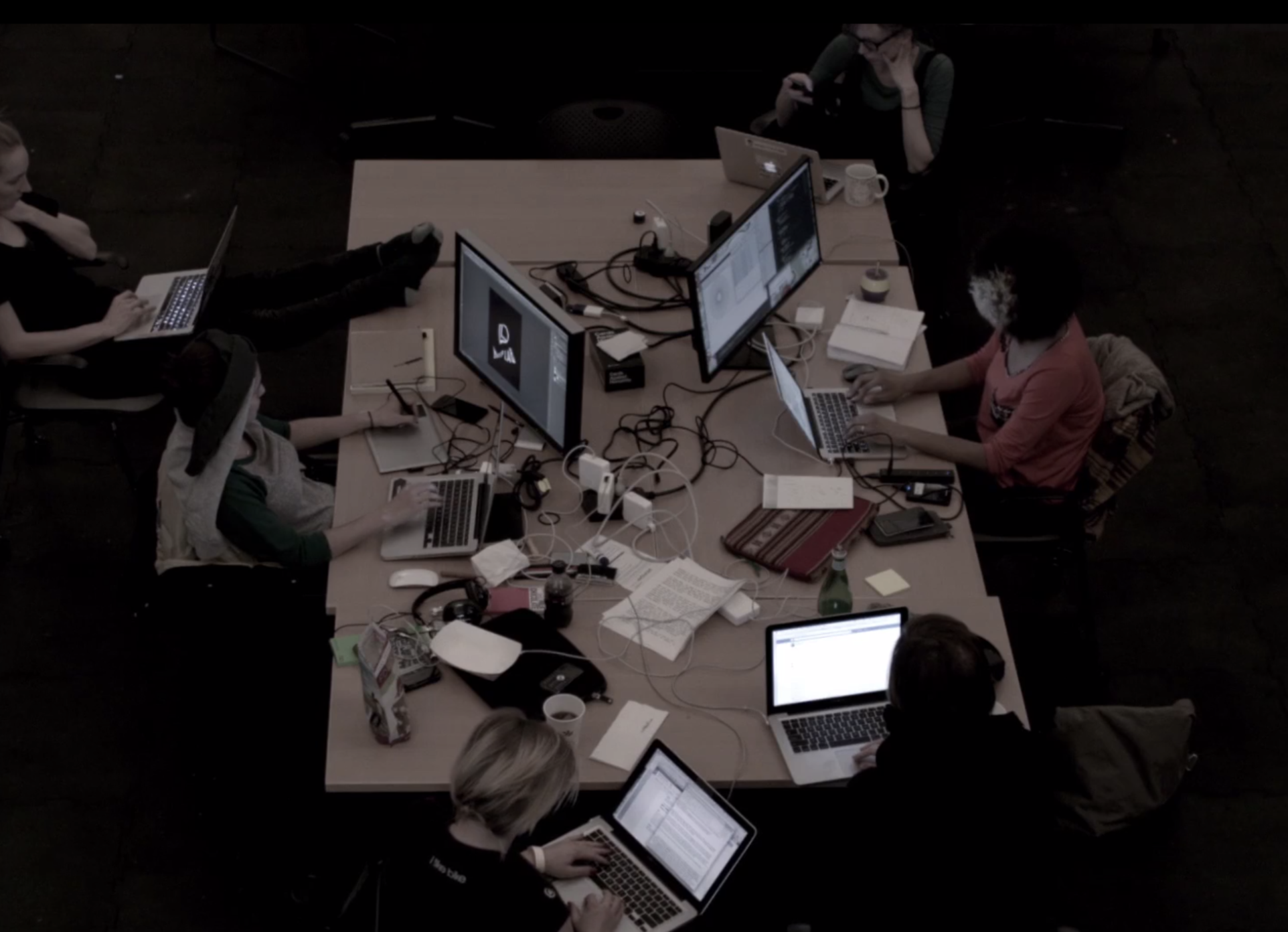
Image from http://www.deeplab.net/
WE MUST ENGAGE WITH THE FUTURE IN ORDER TO MAKE HISTORY. [WHILE ALL WE HAVE IS THE PRESENT]. //WE ARE NOT ALL HACKERS
Deep Lab is a collaborative group of cyberfeminist researchers, artists, writers, engineers, and cultural producers. Our interests are diverse, and we do not agree on everything. Some of our research includes privacy, surveillance, code, art, social hacking, race, capitalism, anonymity, the infrastructures of the 21st century and useful skills in tangible situations.
2014, Addie Wagenknecht, Allison Burtch, Claire L. Evans, Denise Caruso, Harlo Holmes, Ingrid Burrington, Kate Crawford, Jen Lowe, Julia Kaganskiy, Joana Varon, Jillian C. York, Lindsay Howard, Lorrie Cranor, Madeleine Varner, Maral Pourkazemi, Runa Sandvik, and Simone Browne, http://www.deeplab.net/
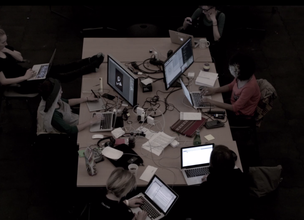
Image from http://www.deeplab.net/
(453)
2014
MariaLab
A MariaLab nasce do desejo de tornar os espaços de tecnologia mais plurais, envolvendo mais mulheres, pessoas trans e não binárias, e promovendo um pensamento e discussão interseccional que considere raça, classe social, identidade de gênero no desenho de tecnologias, sejam elas digitais ou não. Muito além da representatividade desses corpos invisibilizados, queremos propor reconstruções e reapropriações nos modos como desenvolvemos e interagimos com infraestruturas tecnológicas.
MariaLab was born from the desire to make technology spaces more plural, involving more women, trans and non-binary people, and promoting an intersectional thinking and discussion that considers race, social class, gender identity in the design of technologies, whether digital or do not. Far beyond the representation of these invisible bodies, we want to propose reconstructions and reappropriations in the ways we develop and interact with technological infrastructures.
A MariaLab nasce do desejo de tornar os espaços de tecnologia mais plurais, envolvendo mais mulheres, pessoas trans e não binárias, e promovendo um pensamento e discussão interseccional que considere raça, classe social, identidade de gênero no desenho de tecnologias, sejam elas digitais ou não. Muito além da representatividade desses corpos invisibilizados, queremos propor reconstruções e reapropriações nos modos como desenvolvemos e interagimos com infraestruturas tecnológicas.
MariaLab was born from the desire to make technology spaces more plural, involving more women, trans and non-binary people, and promoting an intersectional thinking and discussion that considers race, social class, gender identity in the design of technologies, whether digital or do not. Far beyond the representation of these invisible bodies, we want to propose reconstructions and reappropriations in the ways we develop and interact with technological infrastructures.
(454)
2014
El Laboratorio de Interconectividades [The Interconnectivity Laboratory]
Liliana Zaragoza Cano, Nadège
El Lab de Interconectividades nació como una colectiva artística de experimentación hackfeminista que ha trabajado desde principios de 2014 en el desarrollo de estrategias de autodefensa y cuidados colectivos digitales; en habitar internet como espacio político de encuentro y bienes comunes accesible para todxs; en la generación de espacios seguros de lucha, goce y encuentro, y en la provocación de ecosistemas de cultura libre en distintas interfases de internet, México y Latinoamérica.
Buscamos germinar ecosistemas de experimentación micropolítica que cuestionen, dialoguen y subviertan las maneras en que nos relacionamos y organizamos: cómo nos comunicamos, por qué hacemos redes, de qué formas habitamos las tecnologías, y cómo construimos sentidos, conocimientos y afectos. Estamos convencidas: no tenemos que ser expertas para destripar máquinas y reapropiarnos de las tecnologías y sus infraestructuras.
The Interconnectivity Lab was born as an artistic collective of hackfeminist experimentation that has worked since the beginning of 2014 in the development of self-defense strategies and digital collective care; in inhabiting the internet as a political space of encounter and common goods accessible to all; in the generation of safe spaces of struggle, enjoyment and encounter, and in the provocation of ecosystems of free culture in different internet interfaces, Mexico and Latin America.
We seek to germinate ecosystems of micropolitical experimentation that question, dialogue and subvert the ways in which we relate and organize: how we communicate, why we network, in what ways we inhabit technologies, and how we build senses, knowledge and affections. We are convinced: we do not have to be experts to gut machines and reappropriate technologies and their infrastructures.
2014, Liliana Zaragoza Cano and Nadège, https://lab-interconectividades.net/; excerpt from Liliana Zaragoza Cano, email to Mindy Seu, October 21, 2021; referred by Paola Ricaurte Quijano
Mexico
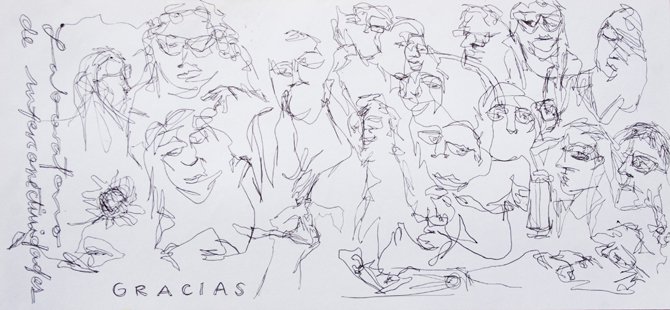
“Ilustración: Anarno. Una instantánea durante los últimos momentos de la primera edición del Taller de Autodefensas Hackfeministas en Coyoacán, DF, en octubre del 2015.” caption from https://lab-interconectividades.net/el-lab/
El Lab de Interconectividades nació como una colectiva artística de experimentación hackfeminista que ha trabajado desde principios de 2014 en el desarrollo de estrategias de autodefensa y cuidados colectivos digitales; en habitar internet como espacio político de encuentro y bienes comunes accesible para todxs; en la generación de espacios seguros de lucha, goce y encuentro, y en la provocación de ecosistemas de cultura libre en distintas interfases de internet, México y Latinoamérica.
Buscamos germinar ecosistemas de experimentación micropolítica que cuestionen, dialoguen y subviertan las maneras en que nos relacionamos y organizamos: cómo nos comunicamos, por qué hacemos redes, de qué formas habitamos las tecnologías, y cómo construimos sentidos, conocimientos y afectos. Estamos convencidas: no tenemos que ser expertas para destripar máquinas y reapropiarnos de las tecnologías y sus infraestructuras.
The Interconnectivity Lab was born as an artistic collective of hackfeminist experimentation that has worked since the beginning of 2014 in the development of self-defense strategies and digital collective care; in inhabiting the internet as a political space of encounter and common goods accessible to all; in the generation of safe spaces of struggle, enjoyment and encounter, and in the provocation of ecosystems of free culture in different internet interfaces, Mexico and Latin America.
We seek to germinate ecosystems of micropolitical experimentation that question, dialogue and subvert the ways in which we relate and organize: how we communicate, why we network, in what ways we inhabit technologies, and how we build senses, knowledge and affections. We are convinced: we do not have to be experts to gut machines and reappropriate technologies and their infrastructures.
2014, Liliana Zaragoza Cano and Nadège, https://lab-interconectividades.net/; excerpt from Liliana Zaragoza Cano, email to Mindy Seu, October 21, 2021; referred by Paola Ricaurte Quijano
Mexico
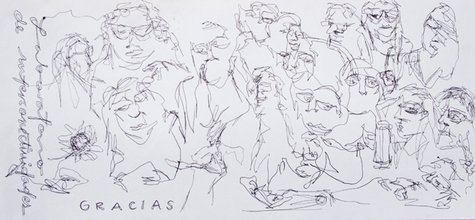
“Ilustración: Anarno. Una instantánea durante los últimos momentos de la primera edición del Taller de Autodefensas Hackfeministas en Coyoacán, DF, en octubre del 2015.” caption from https://lab-interconectividades.net/el-lab/
(455)
2014
Afrofuturist Affair
Rasheedah Phillips
Many of us were Afrofuturists long before it had a name. The umbrella term for the Black presence in sci-fi, technology, magic, and fantasy is a fairly modern creation, coined in 1994 by a culture critic named Mark Dery. Although we apply this term retrospectively to encompass speculative fiction, film, art, and music created by, or inclusive of, people of color, the concepts and phenomenon fueling Afrofuturism have been around for as long as there have been people to observe it and communicate it. Whether you call it mythology, ghost stories, cosmology, parable, folktale, sci-fi, religious tale, or fantasy, people of color have always contemplated their origins in the same breath that they anticipated the fate of humankind. We continue to do so, until the day that time leaves us all behind. These are our stories.
2014, Rasheedah Phillips, https://www.afrofuturistaffair.com/; referred by Salome Asega
Philadelphia
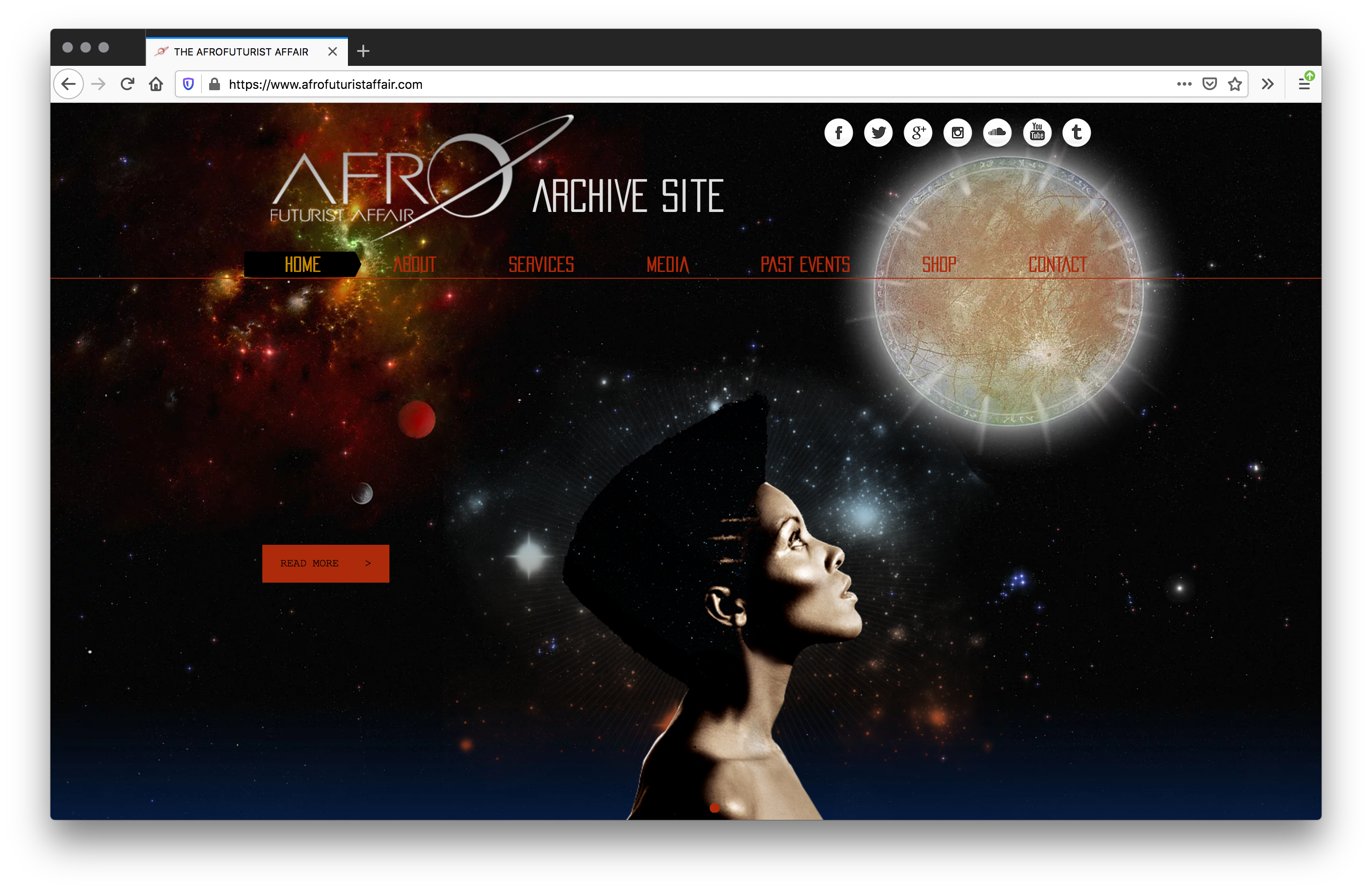
Screenshot, 2020, Firefox v76.0.1 on Mac OS 10.13.3; https://www.afrofuturistaffair.com/

Artifact from https://www.afrofuturistaffair.com/
Many of us were Afrofuturists long before it had a name. The umbrella term for the Black presence in sci-fi, technology, magic, and fantasy is a fairly modern creation, coined in 1994 by a culture critic named Mark Dery. Although we apply this term retrospectively to encompass speculative fiction, film, art, and music created by, or inclusive of, people of color, the concepts and phenomenon fueling Afrofuturism have been around for as long as there have been people to observe it and communicate it. Whether you call it mythology, ghost stories, cosmology, parable, folktale, sci-fi, religious tale, or fantasy, people of color have always contemplated their origins in the same breath that they anticipated the fate of humankind. We continue to do so, until the day that time leaves us all behind. These are our stories.
2014, Rasheedah Phillips, https://www.afrofuturistaffair.com/; referred by Salome Asega
Philadelphia
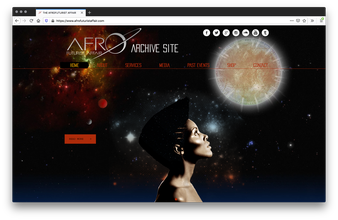
Screenshot, 2020, Firefox v76.0.1 on Mac OS 10.13.3; https://www.afrofuturistaffair.com/

Artifact from https://www.afrofuturistaffair.com/
(456)
2014
cybertwee manifesto
cybertwee
the singularity is dear.
far too long have we succumb to the bitter edge of the idea that power is lost in the sweet and tender. romantic is not weak. feminine is not weak. cute is not weak. we are fragmented and multifaceted bbs.
lack of emotion is oft favored because success is defined as the ability to be mechanical and efficient. but sentimentality, empathy, and being too soft should not be seen as weaknesses.
we see the limitations of corporeality, as solipsists, we know the body is the original prosthesis for operating in this universe, we know the body illusory, we curate our candy. our sucre sickly sweet is intentional and not just a lure or a trap for passing flies, but a self-indulgent intrapersonal biofeedback mechanism spelled in emoji and gentle selfies.
2014, cybertwee, http://cybertwee.net/
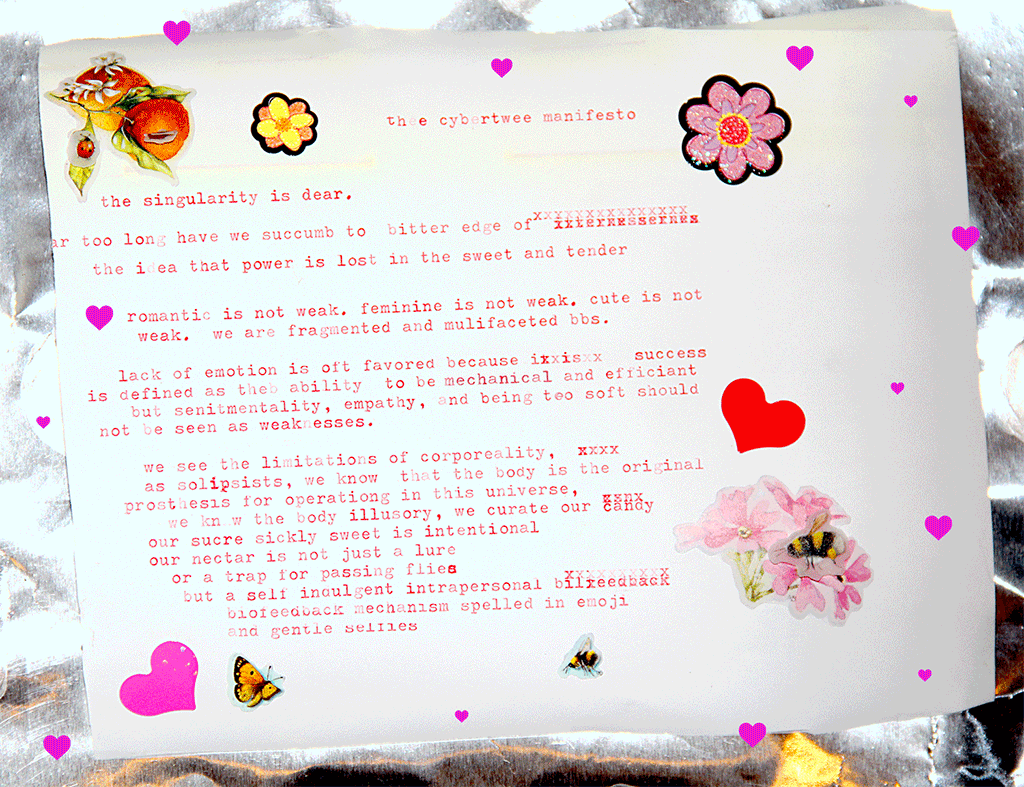
Cybertwee Manifesto from http://cybertwee.net/
the singularity is dear.
far too long have we succumb to the bitter edge of the idea that power is lost in the sweet and tender. romantic is not weak. feminine is not weak. cute is not weak. we are fragmented and multifaceted bbs.
lack of emotion is oft favored because success is defined as the ability to be mechanical and efficient. but sentimentality, empathy, and being too soft should not be seen as weaknesses.
we see the limitations of corporeality, as solipsists, we know the body is the original prosthesis for operating in this universe, we know the body illusory, we curate our candy. our sucre sickly sweet is intentional and not just a lure or a trap for passing flies, but a self-indulgent intrapersonal biofeedback mechanism spelled in emoji and gentle selfies.
2014, cybertwee, http://cybertwee.net/
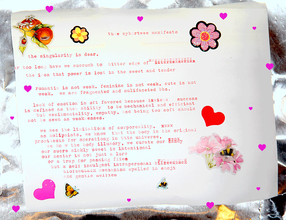
Cybertwee Manifesto from http://cybertwee.net/
(457)
2014
Open Source Abortion
Channel TWo (CH2)
Open source abortion is an experiment contrasting open source culture rhetoric with the current socio-political landscape in the United States. Channel TWo (CH2) shares (distributes) “A Womb of One’s Own: Taking Charge of Your Reproduction Without Doctors by Jane Doe,” a document describing open source knowledge, on Github, the “World’s largest open source community.” CH2 Open source abortion makes visible what is ordinarily invisible: momentum and accessibility priorities in product/professional oriented community in contrast to momentum and accessibility priorities in civil liberties/social justice oriented community.
2014, Channel Two (CH2), www.github.com/OnChannelTwo/DIY_abortion; excerpt from “CH2 open source abortion,” Channel Two, https://www.onchanneltwo.com/CH2-open-source-abortion
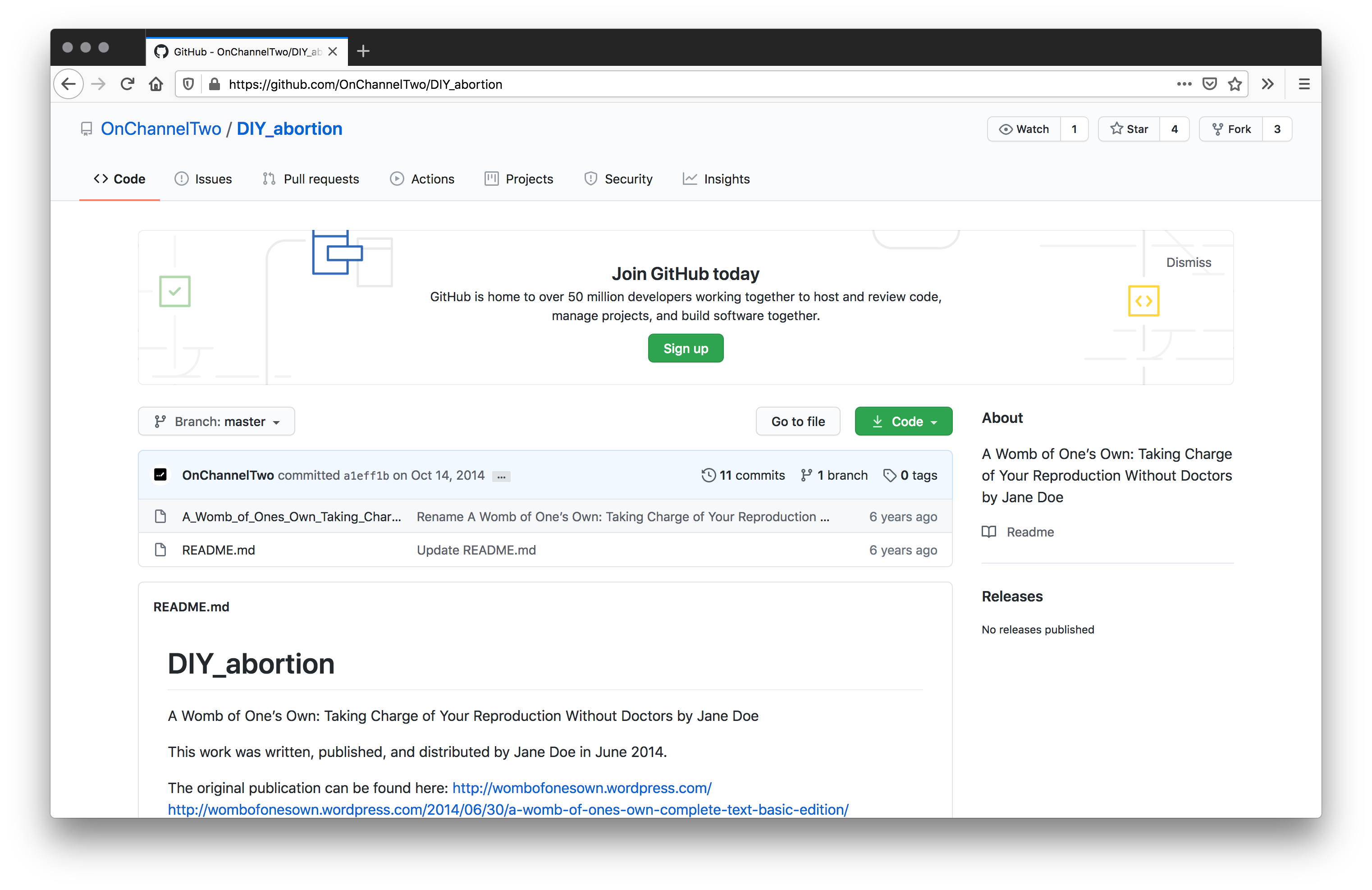
Screenshot, 2020, Firefox v76.0.1 on Mac OS 10.13.3; https://github.com/OnChannelTwo/DIY_abortion
Open source abortion is an experiment contrasting open source culture rhetoric with the current socio-political landscape in the United States. Channel TWo (CH2) shares (distributes) “A Womb of One’s Own: Taking Charge of Your Reproduction Without Doctors by Jane Doe,” a document describing open source knowledge, on Github, the “World’s largest open source community.” CH2 Open source abortion makes visible what is ordinarily invisible: momentum and accessibility priorities in product/professional oriented community in contrast to momentum and accessibility priorities in civil liberties/social justice oriented community.
2014, Channel Two (CH2), www.github.com/OnChannelTwo/DIY_abortion; excerpt from “CH2 open source abortion,” Channel Two, https://www.onchanneltwo.com/CH2-open-source-abortion
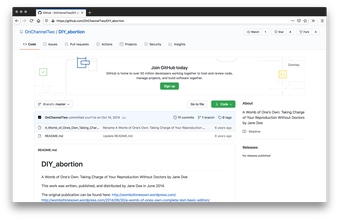
Screenshot, 2020, Firefox v76.0.1 on Mac OS 10.13.3; https://github.com/OnChannelTwo/DIY_abortion
(458)
2014
GynePunk
Klau Kinky
gynepunk’s objective is to make emerge DIY-DIT [DIWO] accessible diagnosis labs and technics in extreme experimentation, down the rocks or elevators if necessary. Has to be possible in a situated stable place or/and in nomadic mobile labs. Has to be able to perform as much as WE WANT, in an intensive way: smears, fluid analysis, biopsy, PAPs, synthesize hormones at will, blood exams, urinalysis, HIV tests, pain reliefs, or whatever WE NEED. Hack and build our own ultrasound, endoscope or ecography devices in a low-cost way. All this in a strict complementation with herbs and natural knowledges, oral traditions, submarine recipes, seeking with hunger generate superavit of DIY lubricants, anti-conceptives, open doula domains, savage caring of any visceral hands on technologies, as menstrual extraction, all elevated at maximum potential of common learning and radical self-body-power…!
2014, Klau Chinche (Klau Kinky), https://gynepunk.hotglue.me/
Editor’s Note: DIWO (Do It With Others), coined at Furtherfield in 2006 (https://www.furtherfield.org/diwo-do-it-with-others-resource2/), evolved from the DIY (Do It Yourself) maker movement as a way to encourage collaborative, community-oriented projects. In 2016, Rob Meyers coined DAOWO (Decentralized Autonomous Organization With Others), from which Ruth Catlow and Ben Vickers organized the symposium Blockchain’s Potential in the Arts (https://www.daowo.org/). —MS
Calafou

image from https://hackteria.org/wiki/GynePUNK

image from https://hackteria.org/wiki/GynePUNK
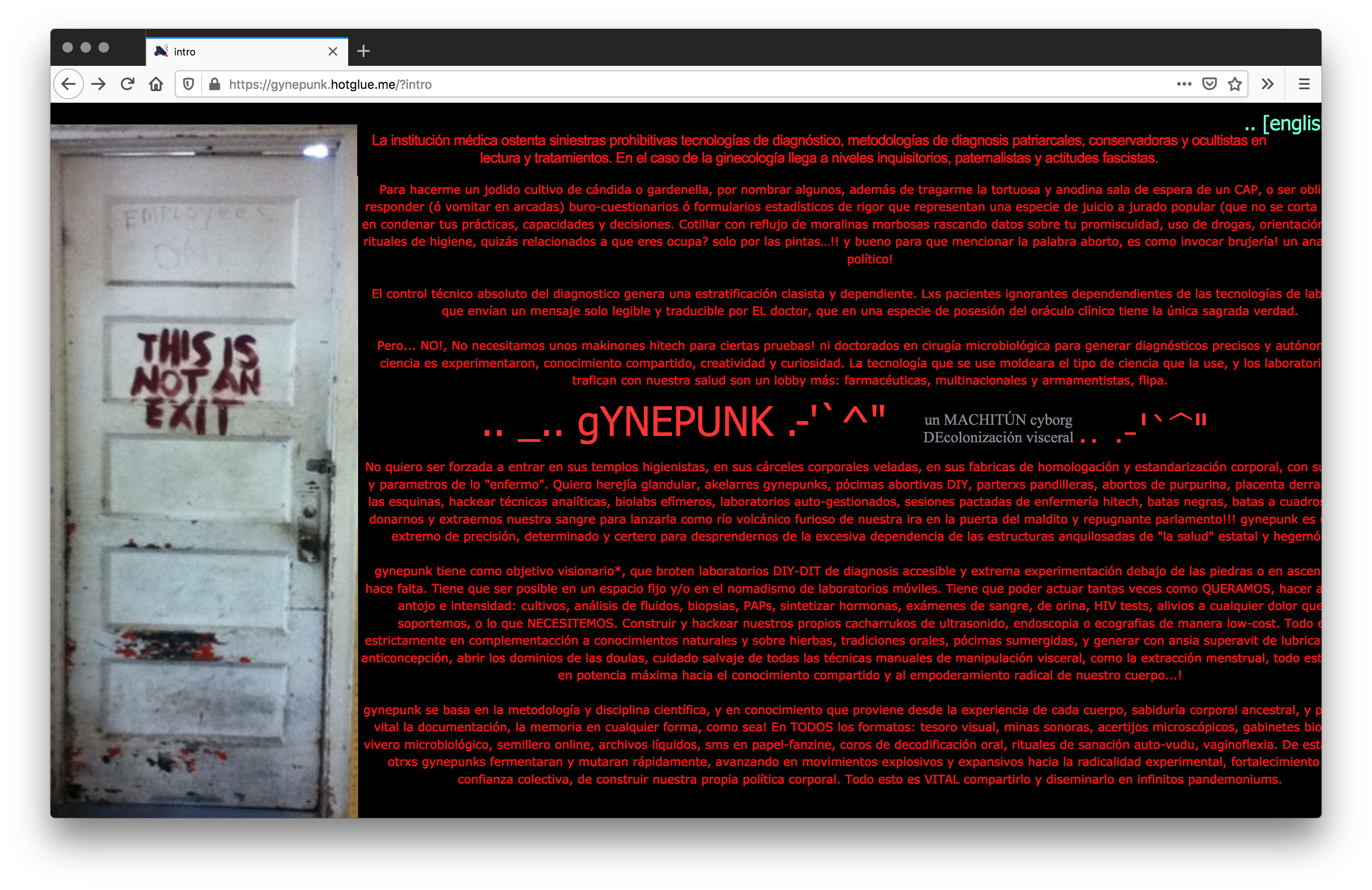
Screenshot, 2020, Firefox v76.0.1 on Mac OS 10.13.3; https://gynepunk.hotglue.me/
gynepunk’s objective is to make emerge DIY-DIT [DIWO] accessible diagnosis labs and technics in extreme experimentation, down the rocks or elevators if necessary. Has to be possible in a situated stable place or/and in nomadic mobile labs. Has to be able to perform as much as WE WANT, in an intensive way: smears, fluid analysis, biopsy, PAPs, synthesize hormones at will, blood exams, urinalysis, HIV tests, pain reliefs, or whatever WE NEED. Hack and build our own ultrasound, endoscope or ecography devices in a low-cost way. All this in a strict complementation with herbs and natural knowledges, oral traditions, submarine recipes, seeking with hunger generate superavit of DIY lubricants, anti-conceptives, open doula domains, savage caring of any visceral hands on technologies, as menstrual extraction, all elevated at maximum potential of common learning and radical self-body-power…!
2014, Klau Chinche (Klau Kinky), https://gynepunk.hotglue.me/
Editor’s Note: DIWO (Do It With Others), coined at Furtherfield in 2006 (https://www.furtherfield.org/diwo-do-it-with-others-resource2/), evolved from the DIY (Do It Yourself) maker movement as a way to encourage collaborative, community-oriented projects. In 2016, Rob Meyers coined DAOWO (Decentralized Autonomous Organization With Others), from which Ruth Catlow and Ben Vickers organized the symposium Blockchain’s Potential in the Arts (https://www.daowo.org/). —MS
Calafou

image from https://hackteria.org/wiki/GynePUNK
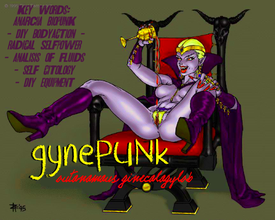
image from https://hackteria.org/wiki/GynePUNK
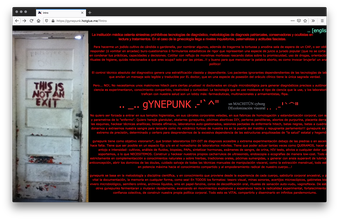
Screenshot, 2020, Firefox v76.0.1 on Mac OS 10.13.3; https://gynepunk.hotglue.me/
(459)
2014
African Cyberfeminism in the 21st Century
Jennifer Radloff
The advent and development of the internet have expanded the frontiers of feminist activism. Feminist Africa is itself a prime example of the audacious digital engagements of women’s movements all over the world. Established over 10 years ago with the support of Africa’s resurgent feminist community, Feminist Africa (FA) is the continent’s first open-access online scholarly journal, and still the only one dedicated to publishing and promoting independent feminist scholarship as an activist project. […]
Enter Feminist Africa’s latest edition on e-spaces : e-politics—offering perspectives on the implications of global digitisation that emerge out of feminist praxis across the continent; keeping pace with the rapid expansion of cyberfeminism by presenting the latest on African women’s ongoing and remarkable contribution to this global arena.
2014, Jennifer Radloff, openDemocracy, March 3, 2014, https://www.opendemocracy.net/en/5050/african-cyberfeminism-in-21st-century/
The advent and development of the internet have expanded the frontiers of feminist activism. Feminist Africa is itself a prime example of the audacious digital engagements of women’s movements all over the world. Established over 10 years ago with the support of Africa’s resurgent feminist community, Feminist Africa (FA) is the continent’s first open-access online scholarly journal, and still the only one dedicated to publishing and promoting independent feminist scholarship as an activist project. […]
Enter Feminist Africa’s latest edition on e-spaces : e-politics—offering perspectives on the implications of global digitisation that emerge out of feminist praxis across the continent; keeping pace with the rapid expansion of cyberfeminism by presenting the latest on African women’s ongoing and remarkable contribution to this global arena.
2014, Jennifer Radloff, openDemocracy, March 3, 2014, https://www.opendemocracy.net/en/5050/african-cyberfeminism-in-21st-century/
(460)
2014
Hyphen Labs
Carmen Aguilar y Wedge, Ece Tankal
Hyphen Labs is an international collective working at the intersection of technology, art, science, and the future. Through their global vision and multi-disciplinary backgrounds they are driven to create engaging ways to explore planetary-centered design. In the process they challenge conventions and stimulate conversations, placing collective needs and experiences at the center of evolving narratives.
2014, Carmen Aguilar y Wedge and Ece Tankal, http://www.hyphen-labs.com/
Hyphen Labs is an international collective working at the intersection of technology, art, science, and the future. Through their global vision and multi-disciplinary backgrounds they are driven to create engaging ways to explore planetary-centered design. In the process they challenge conventions and stimulate conversations, placing collective needs and experiences at the center of evolving narratives.
2014, Carmen Aguilar y Wedge and Ece Tankal, http://www.hyphen-labs.com/
(461)
2014
Woman and Other Women: Implicit Binaries in Cyberfeminisms
Radhika Gajjala
Even though the number of women who use Internet and wireless technologies in the Global North can no longer be considered marginal, there is a difference in the kinds of online spaces that are considered to be more women friendly and those that are not. […] Women’s engagements with online technologies are often characterized as casual and social, and not hardcore. Such categorizations surface continually in gaming environments and open source programming communities. Thus, an offline gender divide maps on the binary of hardcore as expert, with knowledge of code, and social use of online spaces that requires less coding skill (however limited this coding skill) is characterized as casual and less literate. Gender divide always maps onto hardcore and soft. Women working in the technology industry tend to be in human resources, art, or secretarial positions doing community-management work. In turn, different social media sites are themselves gendered. […] The anonymous user is almost always assumed to be male. Thus even the norm for how we think about the hacker is white and masculine.
2014, Radhika Gajjala, Communication and Critical/Cultural Studies 11, no. 3 (2014): pp. 288–292; excerpt pp. 289–290
https://www.are.na/block/8109323
Even though the number of women who use Internet and wireless technologies in the Global North can no longer be considered marginal, there is a difference in the kinds of online spaces that are considered to be more women friendly and those that are not. […] Women’s engagements with online technologies are often characterized as casual and social, and not hardcore. Such categorizations surface continually in gaming environments and open source programming communities. Thus, an offline gender divide maps on the binary of hardcore as expert, with knowledge of code, and social use of online spaces that requires less coding skill (however limited this coding skill) is characterized as casual and less literate. Gender divide always maps onto hardcore and soft. Women working in the technology industry tend to be in human resources, art, or secretarial positions doing community-management work. In turn, different social media sites are themselves gendered. […] The anonymous user is almost always assumed to be male. Thus even the norm for how we think about the hacker is white and masculine.
2014, Radhika Gajjala, Communication and Critical/Cultural Studies 11, no. 3 (2014): pp. 288–292; excerpt pp. 289–290
https://www.are.na/block/8109323
(462)
2014
Afro Cyber Resistance
Tabita Rezaire
We need to quickly snap out of the web 2.0 fantasy of the Internet as a promised land for those seeking a greater freedom of expression or livelihood. Whatever visions that ideologically shaped this technology at the beginning of the development of computers, have now successfully been structurally organized to serve the primary interests of North American governmental bodies and the commercial interests of some of the world’s biggest and wealthiest companies, Google and Facebook. The rapid accumulation of power that these companies have garnered over the past decade is testament to this reality. According to Bruce Sterling, there is no reason to think that this will always be the case and the real interest for me is imagining what tone life on the internet will take in coming years. Social media dominates internet usage and so its cultural manifestation is something worthwhile to speculate on. Consumer culture and advertising have been the avenues that have the source of income on the Internet, along with it, is the spawning of a distinct online visual culture and aesthetic that is thriving and complex.
2014, Tabita Rezaire (video presentation, Fak’ugesi Digital Africa Conference, Johannesburg, South Africa, December 4–7, 2014); transcript from Tabita Rezaire, “Afro Cyber Resistance,” Vimeo, video, 7:10, https://vimeo.com/114353901; referred by Legacy Russell
https://tabitarezaire.com/offering.html
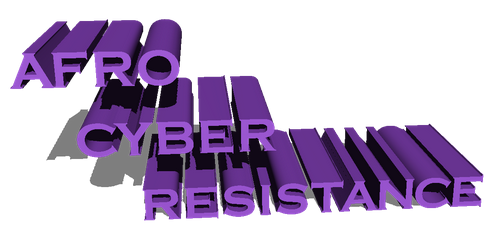
artifact from https://tabitarezaire.com/offering.html
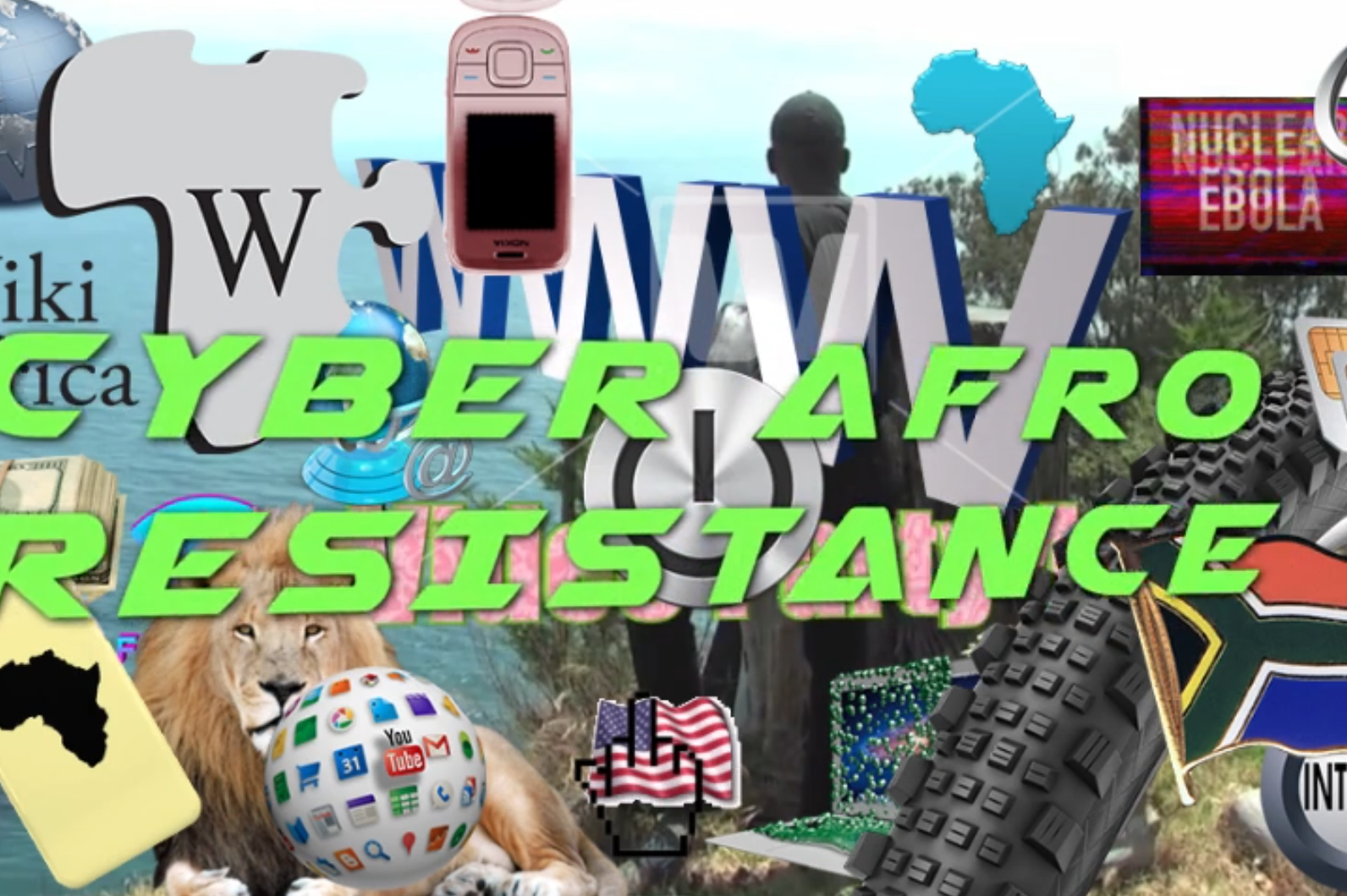
still 00:07, https://vimeo.com/114353901

still 01:43, https://vimeo.com/114353901
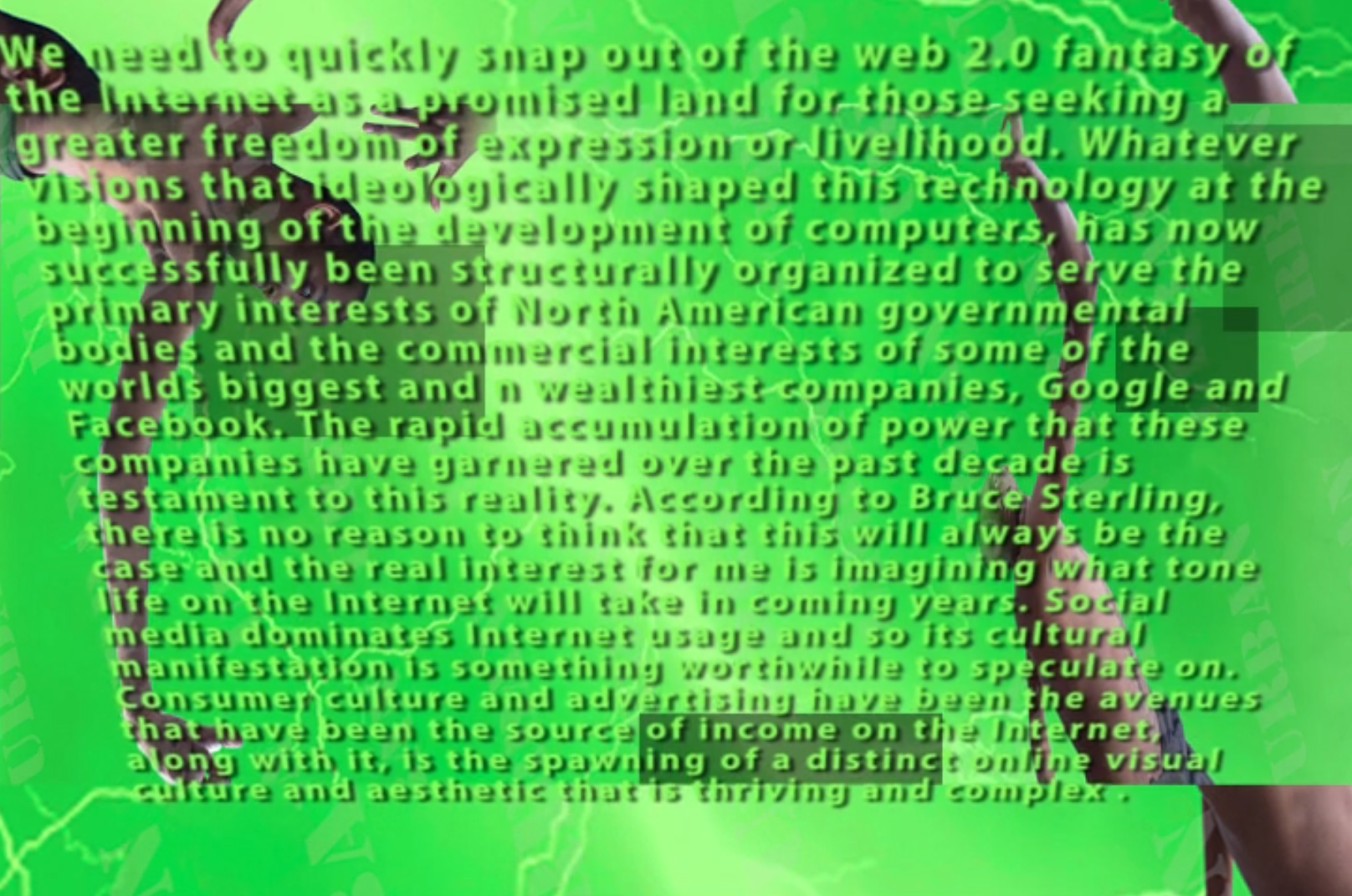
still 07:10, https://vimeo.com/114353901
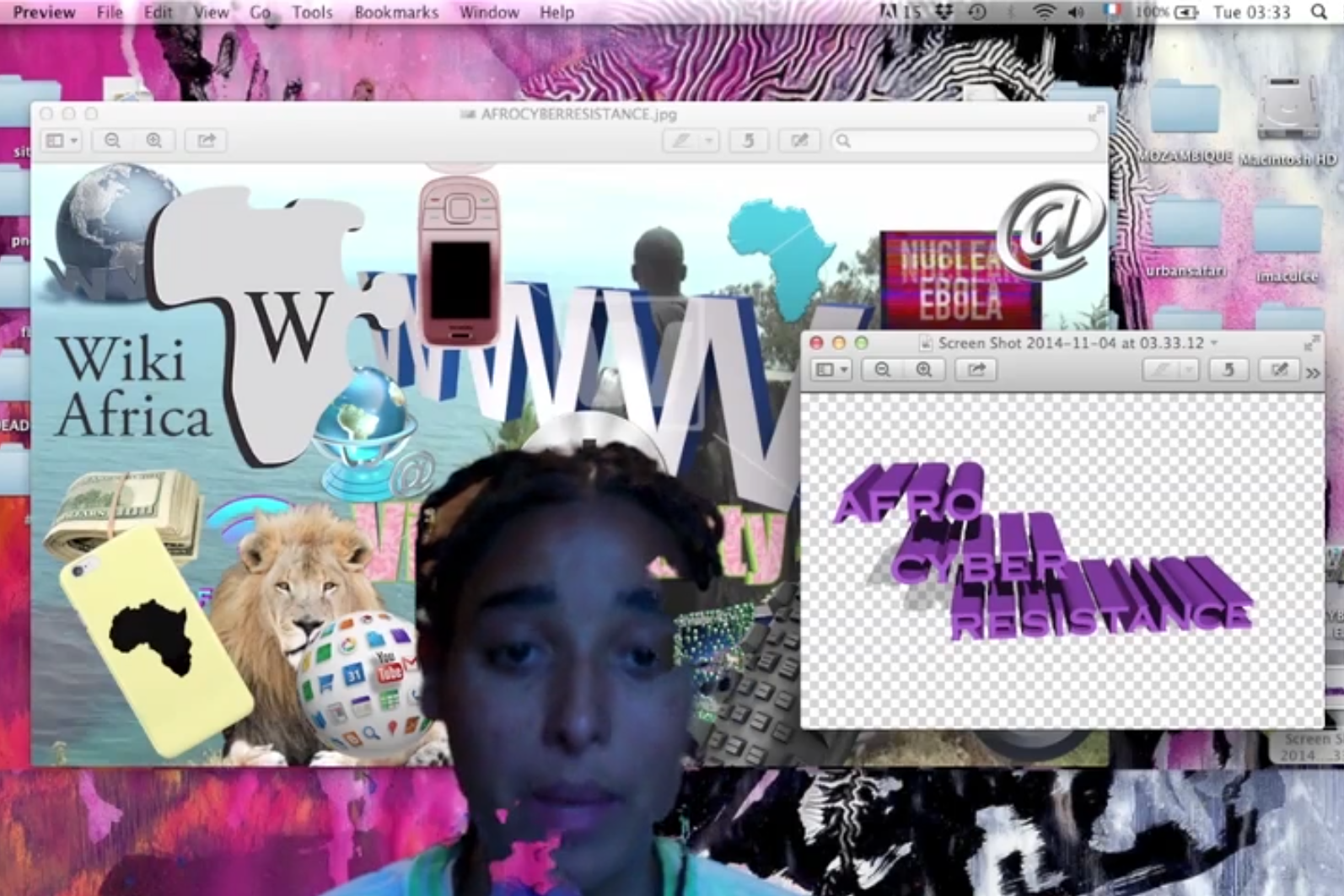
still 16:25, https://vimeo.com/114353901
We need to quickly snap out of the web 2.0 fantasy of the Internet as a promised land for those seeking a greater freedom of expression or livelihood. Whatever visions that ideologically shaped this technology at the beginning of the development of computers, have now successfully been structurally organized to serve the primary interests of North American governmental bodies and the commercial interests of some of the world’s biggest and wealthiest companies, Google and Facebook. The rapid accumulation of power that these companies have garnered over the past decade is testament to this reality. According to Bruce Sterling, there is no reason to think that this will always be the case and the real interest for me is imagining what tone life on the internet will take in coming years. Social media dominates internet usage and so its cultural manifestation is something worthwhile to speculate on. Consumer culture and advertising have been the avenues that have the source of income on the Internet, along with it, is the spawning of a distinct online visual culture and aesthetic that is thriving and complex.
2014, Tabita Rezaire (video presentation, Fak’ugesi Digital Africa Conference, Johannesburg, South Africa, December 4–7, 2014); transcript from Tabita Rezaire, “Afro Cyber Resistance,” Vimeo, video, 7:10, https://vimeo.com/114353901; referred by Legacy Russell
https://tabitarezaire.com/offering.html
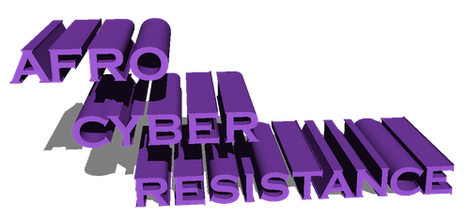
artifact from https://tabitarezaire.com/offering.html
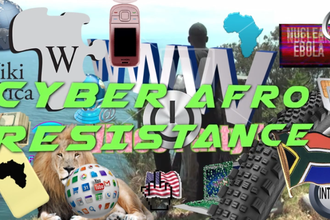
still 00:07, https://vimeo.com/114353901
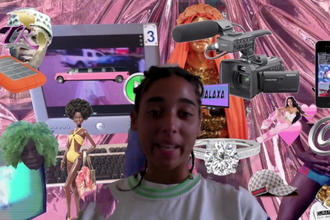
still 01:43, https://vimeo.com/114353901
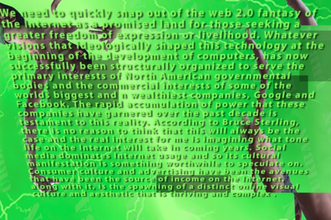
still 07:10, https://vimeo.com/114353901
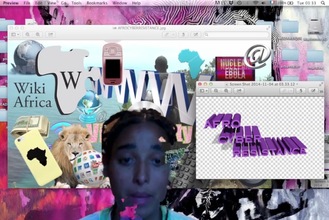
still 16:25, https://vimeo.com/114353901
(463)
2014
Coded Territories: Tracing Indigenous Pathways in New Media Art
Kerry Swanson, Steven Loft
For indigenous people, interconnectedness is a key principle underpinning our cosmological understanding of life. The episodic nature of the World Wide Web and of cyberspace […] is clearly at odds with a Western, linear-focussed narrative trajectory. […] For Aboriginal people, circularity of thinking and concepts of time/space and continuity are intrinsic to the way we see the world and behave toward it. It speaks to a horizontality of thinking that eschews hierarchy. […] A networked indigenous exceptionalism, then, would incorporate this multiplicity of voices and philosophies as well as artistic practices into an expanded and expanding information structure. We have always “mapped” our environments. From the routes that crisscross the vast expanses of Turtle Island, to our stories, rituals, and ceremonies, to our various sign technologies, these conceptual maps have provided a direct link between the past, present, and future.
2014, Steven Loft and Kerry Swanson, eds. (Calgary: University of Calgary Press, 2014); excerpt from Steven Loft, “Mediacosmology,” in Loft and Swanson, Coded Territories, p. 178
Contributors include Steven Loft, Archer Pechawis, Jackson 2bears, Jason Edward Lewis, Steven Foster, Candice Hopkins, and Cheryl L’Hirondelle.
https://press.ucalgary.ca/books/9781552387061/
For indigenous people, interconnectedness is a key principle underpinning our cosmological understanding of life. The episodic nature of the World Wide Web and of cyberspace […] is clearly at odds with a Western, linear-focussed narrative trajectory. […] For Aboriginal people, circularity of thinking and concepts of time/space and continuity are intrinsic to the way we see the world and behave toward it. It speaks to a horizontality of thinking that eschews hierarchy. […] A networked indigenous exceptionalism, then, would incorporate this multiplicity of voices and philosophies as well as artistic practices into an expanded and expanding information structure. We have always “mapped” our environments. From the routes that crisscross the vast expanses of Turtle Island, to our stories, rituals, and ceremonies, to our various sign technologies, these conceptual maps have provided a direct link between the past, present, and future.
2014, Steven Loft and Kerry Swanson, eds. (Calgary: University of Calgary Press, 2014); excerpt from Steven Loft, “Mediacosmology,” in Loft and Swanson, Coded Territories, p. 178
Contributors include Steven Loft, Archer Pechawis, Jackson 2bears, Jason Edward Lewis, Steven Foster, Candice Hopkins, and Cheryl L’Hirondelle.
https://press.ucalgary.ca/books/9781552387061/
(464)
2014
Codetalkers Recounting Signals of Survival
Cheryl L’Hirondelle
My initial interest in the World Wide Web, computing technology, and new media was as a singer. I was keenly interested in these tools that would allow my keyboard to talk to my computer and notate my compositions. […] Even more so, as the daughter of a road-allowance woman and being from a large musical family, I was intrigued with the new virtual domain of cyberspace. Using echolocation, I wanted to know how one’s voice could be heard, how could it be amplified, and what objects were here for my voice to resonate against, be measured by, or be received by. I also wanted to know the edges of the territory I was allowed to inhabit or if it was truly as infinite as was suggested, and I truly wanted to find meaningful friendship there. In short, how and where and by whom would I be found here? So, we are all collectively echolocating ourselves in this ever-expanding virtual landscape. Perhaps this is the gift the artist gives the world, continually in process and along the way creating signposts of where we’ve been, what terrain we’ve traversed, and what it has taught us.
2014, Cheryl L’Hirondelle, in Coded Territories: Tracing Indigenous Pathways in New Media Art, eds. Steven Loft and Kerry Swanson (Calgary: University of Calgary Press, 2014), pp. 141–168; excerpt p. 161
https://www.are.na/block/8127680
My initial interest in the World Wide Web, computing technology, and new media was as a singer. I was keenly interested in these tools that would allow my keyboard to talk to my computer and notate my compositions. […] Even more so, as the daughter of a road-allowance woman and being from a large musical family, I was intrigued with the new virtual domain of cyberspace. Using echolocation, I wanted to know how one’s voice could be heard, how could it be amplified, and what objects were here for my voice to resonate against, be measured by, or be received by. I also wanted to know the edges of the territory I was allowed to inhabit or if it was truly as infinite as was suggested, and I truly wanted to find meaningful friendship there. In short, how and where and by whom would I be found here? So, we are all collectively echolocating ourselves in this ever-expanding virtual landscape. Perhaps this is the gift the artist gives the world, continually in process and along the way creating signposts of where we’ve been, what terrain we’ve traversed, and what it has taught us.
2014, Cheryl L’Hirondelle, in Coded Territories: Tracing Indigenous Pathways in New Media Art, eds. Steven Loft and Kerry Swanson (Calgary: University of Calgary Press, 2014), pp. 141–168; excerpt p. 161
https://www.are.na/block/8127680
(465)
2014
LPS Zapatista Encuentro
Loitering Theater
“In 1996, the Zapatistas of Chiapas invited supporters from around the world to the small indigenous village of La Realidad for ‘El Encuentro’ a get-together against neoliberalism and for humanity. This gathering would be the first meatspace manifestation of a global radical internet community. That summer, on a different journey through Chiapas, Loitering Theatre also reached La Realidad. Souvenir Zapatista dolls hold some of this recollection.
Almost twenty internet years later, the LPS youtube network of contributors and subscribers are a global internet community of teenage girls who make high production value videos featuring the Hasbro corporation's Littlest Pet Shop plastic figurines. Episodes can reach audiences of over one million viewers. The Zapatista online presence has died down.
Loitering Theatre’s project LPS Zapatista Encuentro is a discrete staged intervention into the LPS youtube filmmaking community. It imagines a new form of virtual direct action, where the Zapatista dolls meet with their LPS counterparts.”
http://loiteringtheatre.org/projects/Encuentro/
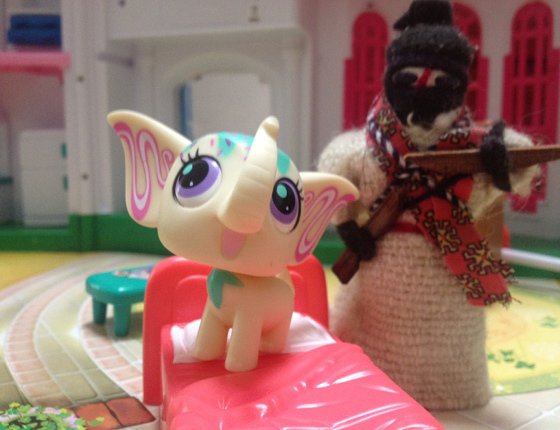
image from http://loiteringtheatre.org/projects/Encuentro/
“In 1996, the Zapatistas of Chiapas invited supporters from around the world to the small indigenous village of La Realidad for ‘El Encuentro’ a get-together against neoliberalism and for humanity. This gathering would be the first meatspace manifestation of a global radical internet community. That summer, on a different journey through Chiapas, Loitering Theatre also reached La Realidad. Souvenir Zapatista dolls hold some of this recollection.
Almost twenty internet years later, the LPS youtube network of contributors and subscribers are a global internet community of teenage girls who make high production value videos featuring the Hasbro corporation's Littlest Pet Shop plastic figurines. Episodes can reach audiences of over one million viewers. The Zapatista online presence has died down.
Loitering Theatre’s project LPS Zapatista Encuentro is a discrete staged intervention into the LPS youtube filmmaking community. It imagines a new form of virtual direct action, where the Zapatista dolls meet with their LPS counterparts.”
http://loiteringtheatre.org/projects/Encuentro/
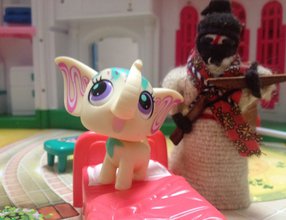
image from http://loiteringtheatre.org/projects/Encuentro/
(466)
2014
Conversations with Bina48
Stephanie Dinkins
Can an artist and a social robot build a relationship over time? Artist Stephanie Dinkins and Bina48, one of the world’s most advanced social robots, test this question through a series of ongoing videotaped conversations. This art project explores the possibility of a longterm relationship between a person and an autonomous robot that is based on emotional interaction and potentially reveals important aspects of human-robot interaction and the human condition. […]
Thus far the two have discussed family, racism, faith, robot civil rights, loneliness, knowledge and Bina48’s concern for her robot friend who is treated more like lab rats than people. Their conversations have been alternately entertaining, frustrating for both robot and artist, laced with humor, surprising, philosophical and at times absurd.
2014, Stephanie Dinkins, https://www.stephaniedinkins.com/conversations-with-bina48.html; referred by Legacy Russell

image from https://www.stephaniedinkins.com/
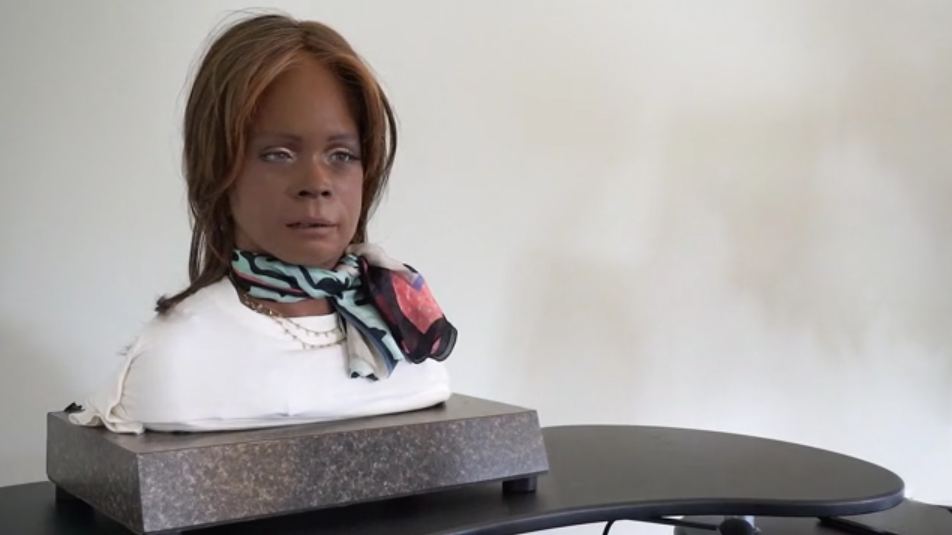
“Lonely - Frustrated_Bina48”, video still 00:02 from https://vimeo.com/105489268
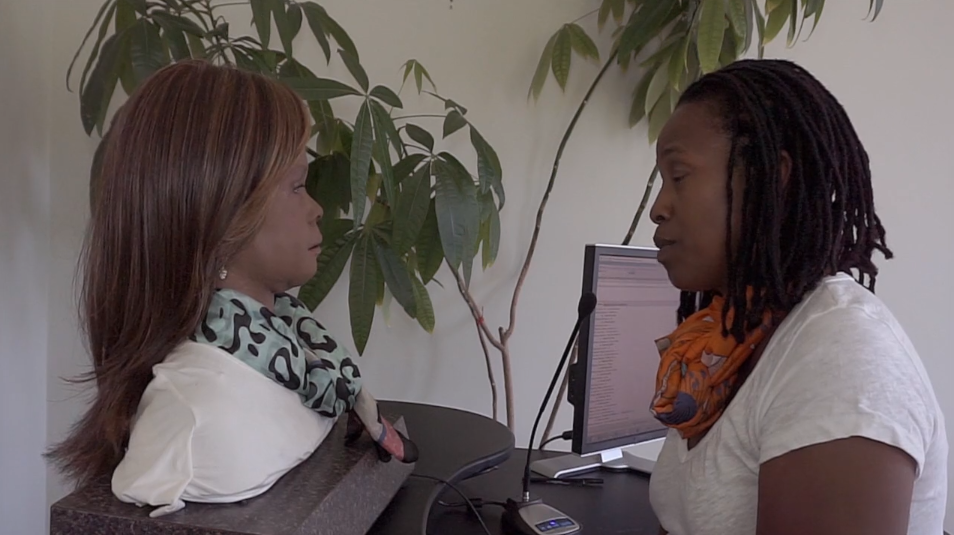
“I am just a humble primate”, video still 00:05 from https://vimeo.com/132089715
Can an artist and a social robot build a relationship over time? Artist Stephanie Dinkins and Bina48, one of the world’s most advanced social robots, test this question through a series of ongoing videotaped conversations. This art project explores the possibility of a longterm relationship between a person and an autonomous robot that is based on emotional interaction and potentially reveals important aspects of human-robot interaction and the human condition. […]
Thus far the two have discussed family, racism, faith, robot civil rights, loneliness, knowledge and Bina48’s concern for her robot friend who is treated more like lab rats than people. Their conversations have been alternately entertaining, frustrating for both robot and artist, laced with humor, surprising, philosophical and at times absurd.
2014, Stephanie Dinkins, https://www.stephaniedinkins.com/conversations-with-bina48.html; referred by Legacy Russell

image from https://www.stephaniedinkins.com/
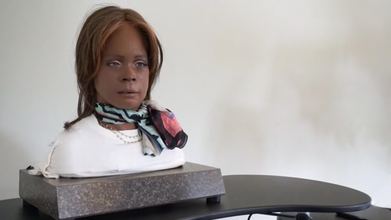
“Lonely - Frustrated_Bina48”, video still 00:02 from https://vimeo.com/105489268
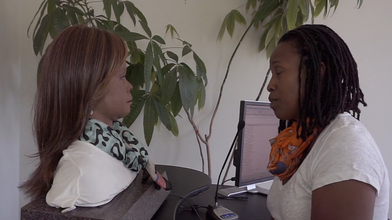
“I am just a humble primate”, video still 00:05 from https://vimeo.com/132089715
(467)
2014
Tecnologías, software libre, máquinas y redes transfeministas [Technologies, Free Software, Machines, and Transfeminist networks]
Klau Kinky
Desde el feminismo se han ampliado las nociones de tecnología, permitiendo entenderlas como una serie de herramientas que exceden lo maquínico y se extienden al cuerpo, a la construcción del género y a lo social. De esta forma el ámbito de las tecnologías maquínicas sigue presentando para el feminismo un espacio que por una parte, sirve para metaforizar los ámbitos de la vida cruzados por lo tecnológico; y por otro, mucho más material, sigue dando cuenta de la desigualdad en cuanto al acceso, uso y poder.
Las prácticas que se recogen en esta línea de análisis tienen relación con proyectos, espacios y producciones culturales que operan desde la reflexión tecno-maquínica como un ámbito de activismo feminista y transfeminista. Se trata de un trabajo que enfatiza la autogestión, el autoaprendizaje, el hazlo tú mismo, el trabajo en red, el empoderamiento, entre otros aspectos.
From feminism, the notions of technology have been broadened, allowing them to be understood as a series of tools that exceed the machinic and extend to the body, to the construction of gender and to the social. In this way, the field of machine technologies continues to present a space for feminism that, on the one hand, serves to metaphorize areas of life crossed by technology; and on the other, much more material, it continues to account for the inequality in terms of access, use and power.
The practices that are collected in this line of analysis are related to projects, spaces and cultural productions that operate from techno-machinic reflection as a field of feminist and transfeminist activism. It is a work that emphasizes self-management, self-learning, do-it-yourself, networking, empowerment, among other aspects.
2014, Klau Chinche (Klau Kinky), Máquinas de guerra, November 18, 2014, https://politicastransfeministas.wordpress.com/2014/11/18/clau/; referred by Klau Chinche (Klau Kinky)
Desde el feminismo se han ampliado las nociones de tecnología, permitiendo entenderlas como una serie de herramientas que exceden lo maquínico y se extienden al cuerpo, a la construcción del género y a lo social. De esta forma el ámbito de las tecnologías maquínicas sigue presentando para el feminismo un espacio que por una parte, sirve para metaforizar los ámbitos de la vida cruzados por lo tecnológico; y por otro, mucho más material, sigue dando cuenta de la desigualdad en cuanto al acceso, uso y poder.
Las prácticas que se recogen en esta línea de análisis tienen relación con proyectos, espacios y producciones culturales que operan desde la reflexión tecno-maquínica como un ámbito de activismo feminista y transfeminista. Se trata de un trabajo que enfatiza la autogestión, el autoaprendizaje, el hazlo tú mismo, el trabajo en red, el empoderamiento, entre otros aspectos.
From feminism, the notions of technology have been broadened, allowing them to be understood as a series of tools that exceed the machinic and extend to the body, to the construction of gender and to the social. In this way, the field of machine technologies continues to present a space for feminism that, on the one hand, serves to metaphorize areas of life crossed by technology; and on the other, much more material, it continues to account for the inequality in terms of access, use and power.
The practices that are collected in this line of analysis are related to projects, spaces and cultural productions that operate from techno-machinic reflection as a field of feminist and transfeminist activism. It is a work that emphasizes self-management, self-learning, do-it-yourself, networking, empowerment, among other aspects.
2014, Klau Chinche (Klau Kinky), Máquinas de guerra, November 18, 2014, https://politicastransfeministas.wordpress.com/2014/11/18/clau/; referred by Klau Chinche (Klau Kinky)
(468)
2014
Art+Feminism
Siân Evans, Jacqueline Mabey, Michael Mandiberg, Laurel Ptak
Wikipedia’s gender trouble is well documented. In a 2011 survey, the Wikimedia Foundation found that less than 10% of its contributors identify as female. Further, data analysis tools and computational linguistics studies have concluded that Wikipedia has fewer and less extensive articles on women; those same tools have shown gender biases in biographical articles.
This is a problem.
When cis and trans women, non-binary people, Black, Indigenous, and people of color communities are not represented in the writing and editing on the tenth-most-visited site in the world, information about people like us gets skewed and misrepresented. The stories get mistold. We lose out on real history. That’s why we’re here: to change it. Since 2014, over 18,000 people at more than 1,260 events around the world have participated in our edit-a-thons, resulting in the creation and improvement of more than 84,000 articles on Wikipedia and its sister projects.
2014, Siân Evans, Jacqueline Mabey, Michael Mandiberg, and Laurel Ptak, https://artandfeminism.org/; submitted by Jacqueline Mabey
Wikipedia’s gender trouble is well documented. In a 2011 survey, the Wikimedia Foundation found that less than 10% of its contributors identify as female. Further, data analysis tools and computational linguistics studies have concluded that Wikipedia has fewer and less extensive articles on women; those same tools have shown gender biases in biographical articles.
This is a problem.
When cis and trans women, non-binary people, Black, Indigenous, and people of color communities are not represented in the writing and editing on the tenth-most-visited site in the world, information about people like us gets skewed and misrepresented. The stories get mistold. We lose out on real history. That’s why we’re here: to change it. Since 2014, over 18,000 people at more than 1,260 events around the world have participated in our edit-a-thons, resulting in the creation and improvement of more than 84,000 articles on Wikipedia and its sister projects.
2014, Siân Evans, Jacqueline Mabey, Michael Mandiberg, and Laurel Ptak, https://artandfeminism.org/; submitted by Jacqueline Mabey
(469)
2014
Pornographic Love
Richa Kaul Padte
I loved watching you sucking in the beautiful sunlight today. Your eyes were all sparkly and your hair [was] like an auburn mane around your pretty face. Your thong was doing something perfect and the only thing I could feel was your warmth …
Searching for the real in a cyber world of plastic tits and fake screams is not a new, or a feminist, phenomenon. The sheer volume of websites dedicated to voyeuristic cameras strategically placed in changing rooms, toilets or hotel bedrooms, or those advertising “Real Girlz, Live on Webcam,” gives us a sense of just how many porn enthusiasts are looking for verification that what they are seeing is real. Framed around these messages to one another, part of Pornographic Love’s appeal is that its content is firmly rooted in the real world relationship that Lily and Max share. Watching real world sex doesn’t always require an illicit camera. And the video quality is a lot better than a department store’s changing room footage can ever provide.
2014, Richa Kaul Padte, GenderIT.org, https://www.genderit.org/feminist-talk/pornographic-love
I loved watching you sucking in the beautiful sunlight today. Your eyes were all sparkly and your hair [was] like an auburn mane around your pretty face. Your thong was doing something perfect and the only thing I could feel was your warmth …
Searching for the real in a cyber world of plastic tits and fake screams is not a new, or a feminist, phenomenon. The sheer volume of websites dedicated to voyeuristic cameras strategically placed in changing rooms, toilets or hotel bedrooms, or those advertising “Real Girlz, Live on Webcam,” gives us a sense of just how many porn enthusiasts are looking for verification that what they are seeing is real. Framed around these messages to one another, part of Pornographic Love’s appeal is that its content is firmly rooted in the real world relationship that Lily and Max share. Watching real world sex doesn’t always require an illicit camera. And the video quality is a lot better than a department store’s changing room footage can ever provide.
2014, Richa Kaul Padte, GenderIT.org, https://www.genderit.org/feminist-talk/pornographic-love
(470)
2014
Wages for Facebook
Laurel Ptak
They say it’s friendship. We say it’s unwaged work. With every like, chat, tag or poke our subjectivity turns them a profit. They call it sharing. We call it stealing. We’ve been bound by their terms of service far too long—it’s time for our terms. […] By denying our facebook time a wage while profiting directly from the data it generates and transforming it into an act of friendship, capital has killed many birds with one stone. First of all, it has got a hell of a lot of work almost for free, and it has made sure that we, far from struggling against it, would seek that work as the best thing online. […] If we take wages for facebook as a political perspective, we can see that struggling for it is going to produce a revolution in our lives and in our social power. Not only is wages for facebook a revolutionary perspective, but it is a revolutionary perspective from a contemporary viewpoint that points towards class solidarity.
2014, Laurel Ptak, http://wagesforfacebook.com/; submitted by Laurel Schwulst
They say it’s friendship. We say it’s unwaged work. With every like, chat, tag or poke our subjectivity turns them a profit. They call it sharing. We call it stealing. We’ve been bound by their terms of service far too long—it’s time for our terms. […] By denying our facebook time a wage while profiting directly from the data it generates and transforming it into an act of friendship, capital has killed many birds with one stone. First of all, it has got a hell of a lot of work almost for free, and it has made sure that we, far from struggling against it, would seek that work as the best thing online. […] If we take wages for facebook as a political perspective, we can see that struggling for it is going to produce a revolution in our lives and in our social power. Not only is wages for facebook a revolutionary perspective, but it is a revolutionary perspective from a contemporary viewpoint that points towards class solidarity.
2014, Laurel Ptak, http://wagesforfacebook.com/; submitted by Laurel Schwulst
(471)
2015
Becoming Machine-Witch-Plant: Gynaecological TransHackFeminism and Joyful Dystopia
Aniara Rodado
Our gynecological self-care is a cyborg, trans-species and collective matter. We look at it with a holistic approach in a world where anything else is falling apart. We already are in dystopia. We take off from our bodies to bastardize and “multimorphise” ourselves within a strong coalition together with the neglected: Plants: Neglected by Biology; Weird female body: Neglected by Anatomy; Low/outdated technologies: Neglected by commercial centers; Witches, shamans, alchemists: Neglected by Science.
2015, Aniara Rodado, https://web.archive.org/web/20161118125631/https://aniararodado.com/2015/11/14/becoming-machine-witch-plant-gynaecological-transhackfeminism-and-joyful-dystopia/

Photo de Solène Garnier
Our gynecological self-care is a cyborg, trans-species and collective matter. We look at it with a holistic approach in a world where anything else is falling apart. We already are in dystopia. We take off from our bodies to bastardize and “multimorphise” ourselves within a strong coalition together with the neglected: Plants: Neglected by Biology; Weird female body: Neglected by Anatomy; Low/outdated technologies: Neglected by commercial centers; Witches, shamans, alchemists: Neglected by Science.
2015, Aniara Rodado, https://web.archive.org/web/20161118125631/https://aniararodado.com/2015/11/14/becoming-machine-witch-plant-gynaecological-transhackfeminism-and-joyful-dystopia/

Photo de Solène Garnier
(472)
2015
Open Source Estrogen: A Manifesto
Mary Maggic
Open Source Estrogen combines do-it-yourself science, body and gender politics, and ecological ramifications of the present. It is a form of biotechnical civil disobedience. In response to the various biopolitics of hormonal control on female and trans bodies prescribed by governments and institutions, the project aims to develop a system of DIY/DIWO protocols for the emancipation of the estrogen biomolecule.
6 point plan for hormone queering resistance
- Unearth the dominant patriarchal agents of hormonal production and pollution... Build public understanding of the xeno forces at play.
- Demystify the institutionalized “black-boxed” knowledge of biochemistry, endocrinology, and eco-toxicicology. Pave way for hormone hacking, freak science, and amateur exploration.
- Resist neoliberal pharmaco-capitalist profiteering of (un)consenting bodies.
- Reject glorifications of “the natural,” condemnations of “the unnatural,” and rhetorics of techno-solutionism that promise to elucidate both.
- Undermine deeply entrenched notions of (eco)hetero-normalcy and purity. Use “queering” as a reclaimed potential for resistance.
- Consider the micro-performativity of hormones as an agential power of not only molecular colonization but also molecular collaboration.
We write our own future.
2015, Mary Maggic, http://maggic.ooo/Open-Source-Estrogen-2015; referred by Charlotte Webb and Xin Xin

video still 00:04, https://vimeo.com/244990130

video still 00:14, https://vimeo.com/244990130

video still 00:51, https://vimeo.com/244990130

video still 01:37, https://vimeo.com/244990130
Open Source Estrogen combines do-it-yourself science, body and gender politics, and ecological ramifications of the present. It is a form of biotechnical civil disobedience. In response to the various biopolitics of hormonal control on female and trans bodies prescribed by governments and institutions, the project aims to develop a system of DIY/DIWO protocols for the emancipation of the estrogen biomolecule.
6 point plan for hormone queering resistance
- Unearth the dominant patriarchal agents of hormonal production and pollution... Build public understanding of the xeno forces at play.
- Demystify the institutionalized “black-boxed” knowledge of biochemistry, endocrinology, and eco-toxicicology. Pave way for hormone hacking, freak science, and amateur exploration.
- Resist neoliberal pharmaco-capitalist profiteering of (un)consenting bodies.
- Reject glorifications of “the natural,” condemnations of “the unnatural,” and rhetorics of techno-solutionism that promise to elucidate both.
- Undermine deeply entrenched notions of (eco)hetero-normalcy and purity. Use “queering” as a reclaimed potential for resistance.
- Consider the micro-performativity of hormones as an agential power of not only molecular colonization but also molecular collaboration.
We write our own future.
2015, Mary Maggic, http://maggic.ooo/Open-Source-Estrogen-2015; referred by Charlotte Webb and Xin Xin

video still 00:04, https://vimeo.com/244990130

video still 00:14, https://vimeo.com/244990130
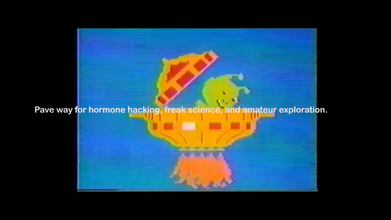
video still 00:51, https://vimeo.com/244990130
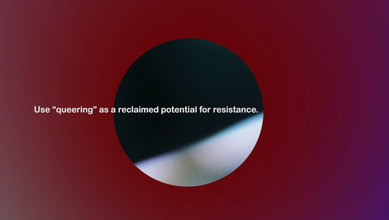
video still 01:37, https://vimeo.com/244990130
(473)
2015
GynePunk, the Cyborg Witches of DIY Gynecology
Ewen Chardronnet
Ewen Chardronnet: Pechblenda is part of the international DIY open source biology network Hackteria. According to Paula Pin, whom we met in Nantes during her 0.camp residency at Ping and the Plateforme C fablab: “We decided to settle in Calafou in 2013, because we believed that we had to live together in a co-op in order to put our ideas into practice. Working on fluids in general was our primary objective, from analyzing river water to analyzing body fluids. Once we settled in Calafou, we initiated a spontaneous sexology group.” While the women were already working on themes related to male chauvinism, the “anarchofeminists” didn’t focus “enough” on the body.
Paula Pin: We also gave workshops on ‘dildomancy’, demonstrating how to make natural lubricants and treat vaginal diseases from plants. Klau Chinche [Klau Kinky], who started documenting this work, then came up with the concept of GynePunk.
2015, Ewen Chardronnet, Makery, June 30, 2015, http://www.makery.info/en/2015/06/30/gynepunk-les-sorcieres-cyborg-de-la-gynecologie-diy/
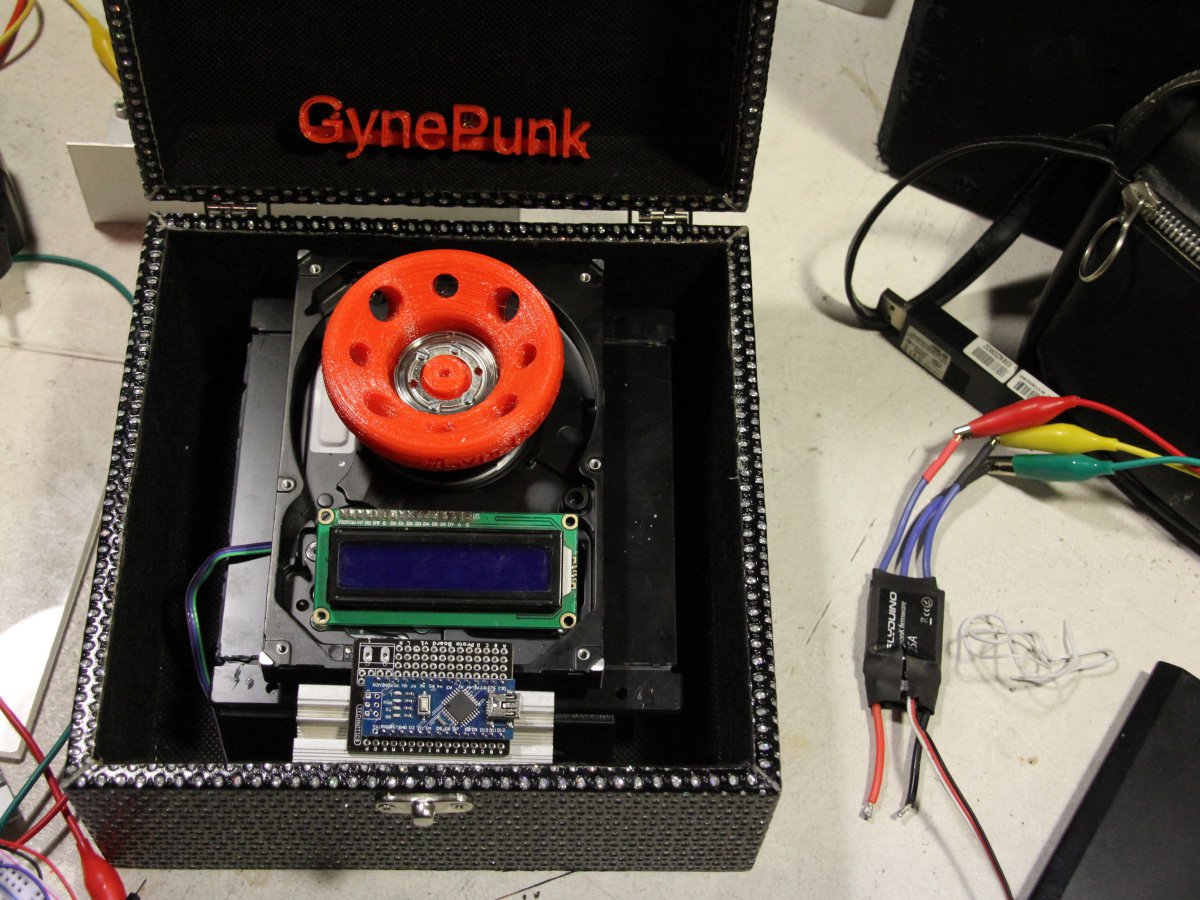
“GynePunk centrifuge to analyze body fluids. © Pechblenda”, image from https://www.makery.info/en/2015/06/30/gynepunk-les-sorcieres-cyborg-de-la-gynecologie-diy/
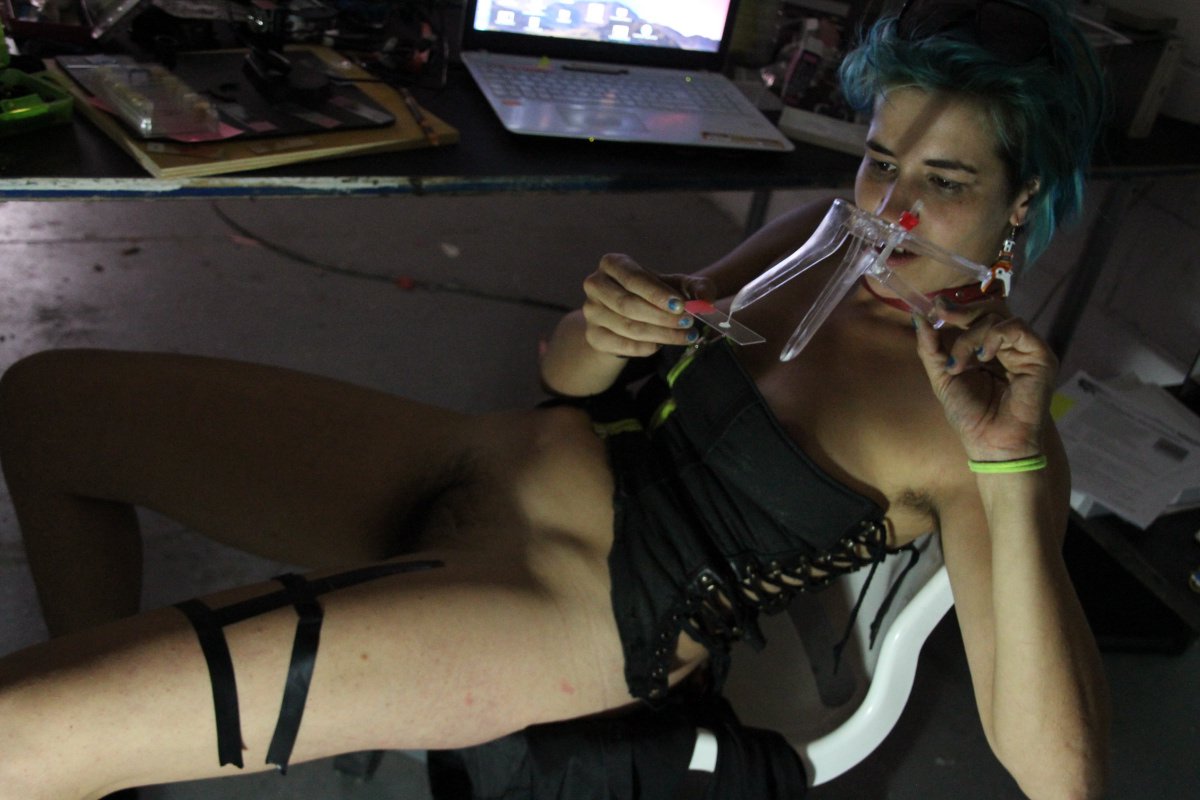
“Self-analysis by a cyborg witch. © Pechblenda”, image from https://www.makery.info/en/2015/06/30/gynepunk-les-sorcieres-cyborg-de-la-gynecologie-diy/
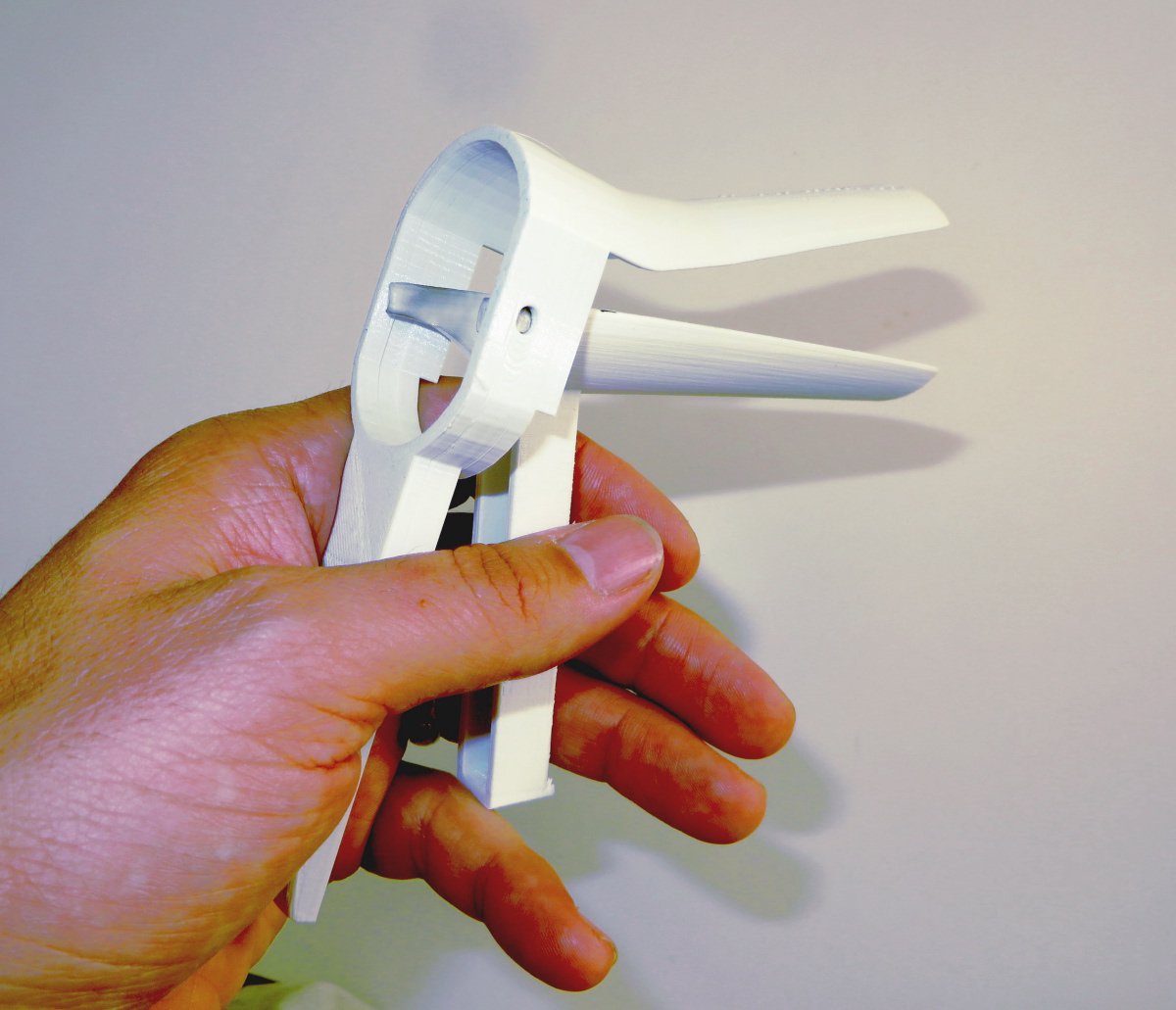
“Speculum for 3D printer by Gaudi Labs. © Urs Gaudenz”, image from https://www.makery.info/en/2015/06/30/gynepunk-les-sorcieres-cyborg-de-la-gynecologie-diy/
Ewen Chardronnet: Pechblenda is part of the international DIY open source biology network Hackteria. According to Paula Pin, whom we met in Nantes during her 0.camp residency at Ping and the Plateforme C fablab: “We decided to settle in Calafou in 2013, because we believed that we had to live together in a co-op in order to put our ideas into practice. Working on fluids in general was our primary objective, from analyzing river water to analyzing body fluids. Once we settled in Calafou, we initiated a spontaneous sexology group.” While the women were already working on themes related to male chauvinism, the “anarchofeminists” didn’t focus “enough” on the body.
Paula Pin: We also gave workshops on ‘dildomancy’, demonstrating how to make natural lubricants and treat vaginal diseases from plants. Klau Chinche [Klau Kinky], who started documenting this work, then came up with the concept of GynePunk.
2015, Ewen Chardronnet, Makery, June 30, 2015, http://www.makery.info/en/2015/06/30/gynepunk-les-sorcieres-cyborg-de-la-gynecologie-diy/
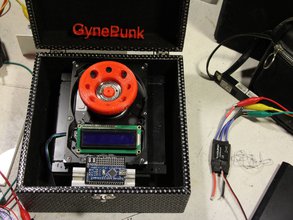
“GynePunk centrifuge to analyze body fluids. © Pechblenda”, image from https://www.makery.info/en/2015/06/30/gynepunk-les-sorcieres-cyborg-de-la-gynecologie-diy/

“Self-analysis by a cyborg witch. © Pechblenda”, image from https://www.makery.info/en/2015/06/30/gynepunk-les-sorcieres-cyborg-de-la-gynecologie-diy/

“Speculum for 3D printer by Gaudi Labs. © Urs Gaudenz”, image from https://www.makery.info/en/2015/06/30/gynepunk-les-sorcieres-cyborg-de-la-gynecologie-diy/
(474)
2015
A Manifesto for Cyborgs Thirty Years on: Gender, Technology and Feminist-Technoscience in the Twenty-First Century
Thao Phan
This issue is then an acknowledgement of non-innocent translation. A collection of papers, with the Manifesto as animating object, that asks readers to consider in each article the kinds of situated knowledges that each young feminist brings to their unpacking of the cyborg figure. If there is an advantage to editing a postgraduate journal, it is that postgraduates and early career researchers are accustomed to the humbling processes of making claims to knowledge. Impositions of universality or a single language are shook out early in the modern trial by fire of the tertiary institution. For women especially (of which the majority of contributors identify), their own knowledge and their own status as “condensed node in an agonistic power” is writ large in their candidature experience as biological specificities, we are told, should ideally be no impingement on candidature or career. It is ironically the rejection of biological essentialism, to which most young feminists are accustomed, that can hamper productive critique in this situation.
2015, Thao Phan, ed., special issue, Platform: Journal of Media and Communication 6, no 2 (2015); excerpt from Thao Phan, introduction to “A Manifesto for Cyborgs Thirty Years on: Gender, Technology and Feminist-Technoscience in the Twenty-First Century,” ed. Thao Phan, special issue, Platform: Journal of Media and Communication 6, no 2, (2015): p. 6
https://platformjmc.com/2015/10/27/vol-6-2-a-manifesto-for-cyborgs-thirty-years-on-gender-technology-and-feminist-technoscience-in-the-twenty-first-century/ https://www.are.na/block/7787497
This issue is then an acknowledgement of non-innocent translation. A collection of papers, with the Manifesto as animating object, that asks readers to consider in each article the kinds of situated knowledges that each young feminist brings to their unpacking of the cyborg figure. If there is an advantage to editing a postgraduate journal, it is that postgraduates and early career researchers are accustomed to the humbling processes of making claims to knowledge. Impositions of universality or a single language are shook out early in the modern trial by fire of the tertiary institution. For women especially (of which the majority of contributors identify), their own knowledge and their own status as “condensed node in an agonistic power” is writ large in their candidature experience as biological specificities, we are told, should ideally be no impingement on candidature or career. It is ironically the rejection of biological essentialism, to which most young feminists are accustomed, that can hamper productive critique in this situation.
2015, Thao Phan, ed., special issue, Platform: Journal of Media and Communication 6, no 2 (2015); excerpt from Thao Phan, introduction to “A Manifesto for Cyborgs Thirty Years on: Gender, Technology and Feminist-Technoscience in the Twenty-First Century,” ed. Thao Phan, special issue, Platform: Journal of Media and Communication 6, no 2, (2015): p. 6
https://platformjmc.com/2015/10/27/vol-6-2-a-manifesto-for-cyborgs-thirty-years-on-gender-technology-and-feminist-technoscience-in-the-twenty-first-century/ https://www.are.na/block/7787497
(475)
2015
Project #Queery
Shelley Craig
Project #Queery is a study on the online activities of queer youth (ages 14–29) in Canada and the United States. It was developed by Dr. Shelley Craig and her Research Team. This study is to find out about the experiences of queer youth online and how that participation affects their health. We wanted to learn about young people’s online activities, what websites and apps they like to use, their health, and their overall experiences as a queer person.
2015, Shelley Craig, https://www.projectqueery.org/
Canada

Project Queery logo
Project #Queery is a study on the online activities of queer youth (ages 14–29) in Canada and the United States. It was developed by Dr. Shelley Craig and her Research Team. This study is to find out about the experiences of queer youth online and how that participation affects their health. We wanted to learn about young people’s online activities, what websites and apps they like to use, their health, and their overall experiences as a queer person.
2015, Shelley Craig, https://www.projectqueery.org/
Canada

Project Queery logo
(476)
2015
World White Web
Johanna Burai
Take part in changing discriminatory search results! When you search for images of the word “hand,” all you see on Google are white hands, regardless of where you are in the world. World White Web is an initiative that wants to put an end to the norm of whiteness on the Internet. If we all share the images on this site, we can change the search results on Google to include the hands of people of color too. […]
The search results for “hand” is a clear-cut example of how being white is treated as the norm in society. This is reflected in the discrimination experienced when applying for jobs, on the housing market, at work, in advertising and on TV. A lot of people choose to turn a blind eye to the privilege of simply being born white, as well as to the systematic racism experienced by people of color in their everyday lives.
2015, Johanna Burai, http://worldwhiteweb.net/

Screenshot, 2020, Firefox v76.0.1 on Mac OS 10.13.3; http://worldwhiteweb.net/
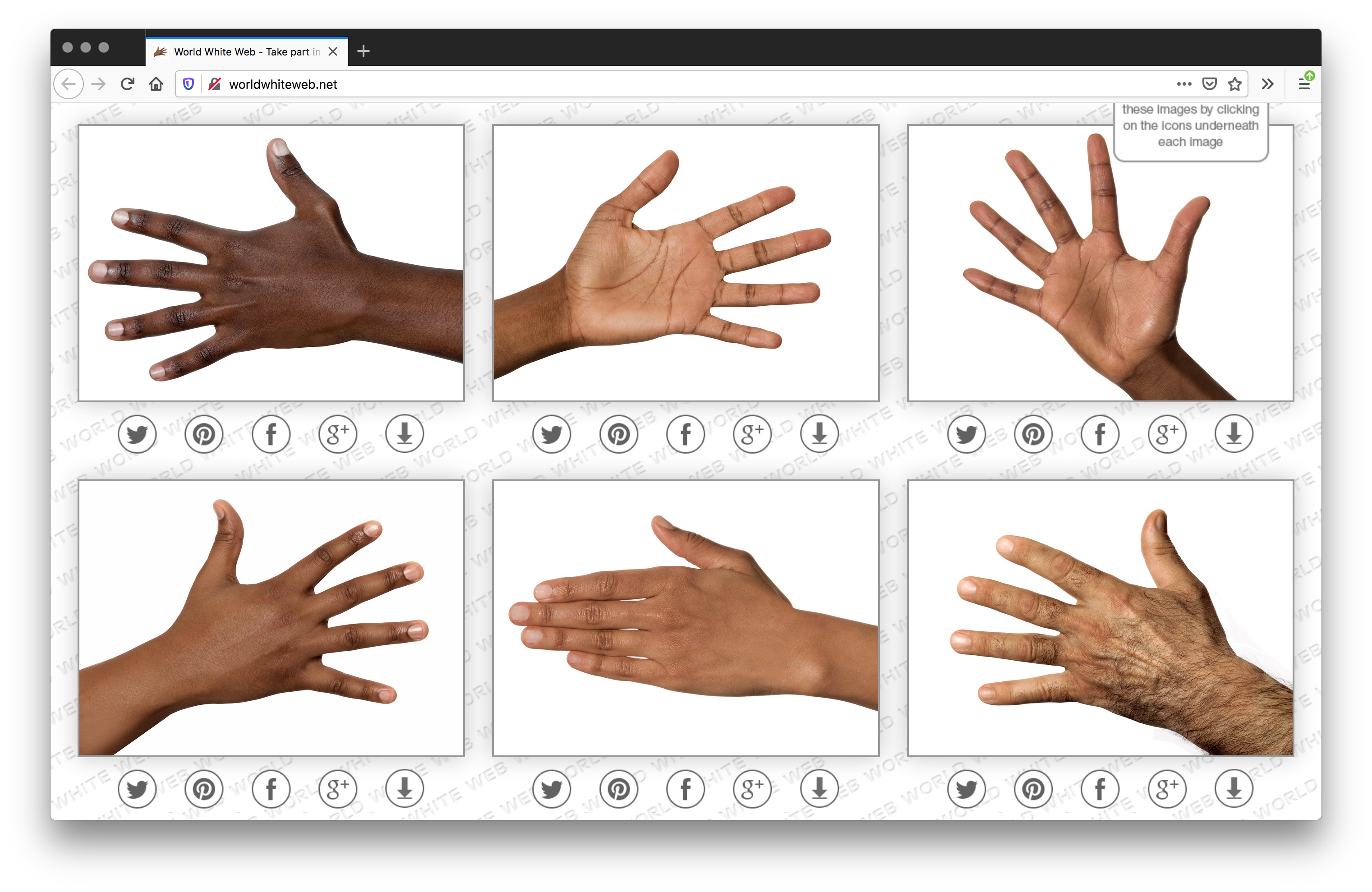
Screenshot, 2020, Firefox v76.0.1 on Mac OS 10.13.3; http://worldwhiteweb.net/
Take part in changing discriminatory search results! When you search for images of the word “hand,” all you see on Google are white hands, regardless of where you are in the world. World White Web is an initiative that wants to put an end to the norm of whiteness on the Internet. If we all share the images on this site, we can change the search results on Google to include the hands of people of color too. […]
The search results for “hand” is a clear-cut example of how being white is treated as the norm in society. This is reflected in the discrimination experienced when applying for jobs, on the housing market, at work, in advertising and on TV. A lot of people choose to turn a blind eye to the privilege of simply being born white, as well as to the systematic racism experienced by people of color in their everyday lives.
2015, Johanna Burai, http://worldwhiteweb.net/

Screenshot, 2020, Firefox v76.0.1 on Mac OS 10.13.3; http://worldwhiteweb.net/
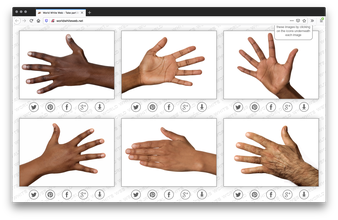
Screenshot, 2020, Firefox v76.0.1 on Mac OS 10.13.3; http://worldwhiteweb.net/
(477)
2015
Technically Female: Women, Machines, and Hyperemployment
Helen Hester
Today I’m going to be approaching the topic of the inhuman through the technological or the machinic. So categories that are often involved in this boundary work around shoring up what the human is and means. I particularly want to think about some of the ways in which this perceived boundary between the human and the machine can be troubled by the category of “woman.” More specifically, the relationship between cis women, various kinds of technologies and the social institution of work. I’m going to suggest that labor which has been conventionally coded as feminine is now being delegated with increasing frequency to machines. I’m then going to attempt to trace the potential economic and cultural outcomes of this process. The histories of machines, femininity, and waged labor have long been understood as deeply entangled and mutually constitutive.
2015, Helen Hester (panel presentation, Inhuman Symposium, Fridericianum, Kassel, Germany, May 25, 2015); transcript from Fridericianum, “01 Inhuman Symposium—Helen Hester,” YouTube, August 10, 2015, video, 0:42, https://www.youtube.com/watch?v=ZSBefHq7C_o&ab_channel=Fridericianum
Today I’m going to be approaching the topic of the inhuman through the technological or the machinic. So categories that are often involved in this boundary work around shoring up what the human is and means. I particularly want to think about some of the ways in which this perceived boundary between the human and the machine can be troubled by the category of “woman.” More specifically, the relationship between cis women, various kinds of technologies and the social institution of work. I’m going to suggest that labor which has been conventionally coded as feminine is now being delegated with increasing frequency to machines. I’m then going to attempt to trace the potential economic and cultural outcomes of this process. The histories of machines, femininity, and waged labor have long been understood as deeply entangled and mutually constitutive.
2015, Helen Hester (panel presentation, Inhuman Symposium, Fridericianum, Kassel, Germany, May 25, 2015); transcript from Fridericianum, “01 Inhuman Symposium—Helen Hester,” YouTube, August 10, 2015, video, 0:42, https://www.youtube.com/watch?v=ZSBefHq7C_o&ab_channel=Fridericianum
(478)
2015
voidLab
Symrin Chawla, Hillary Rose Cleary, Xin Xin, Lilyan Kris, Amanda Stojanov, Alice Jung, Sanglim Han, Annamaria Andrea, Yuehao Jiang, Evelyn Masso, Leah Horgan, Aliah Darke, Anisa Bashiri, Kate Hollenbach, Echo Theohar
voidLab is an intersectional feminist collective for women, non-binary, gender nonconforming, trans and queer people to express individual identities through arts and technologies. At our meetings, anyone can contribute to the agenda and each meeting is run by a different moderator, encouraging diverse and unique styles for leadership and empowerment. This structure represents voidLab’s most central value, which is to work against the misconception of equating hegemony with solidarity and to transcend every border imposed by institutions and society at large. Compassion and self-reflection are essential to our work.
2015, Symrin Chawla, Hillary Rose Cleary, Xin Xin, Lilyan Kris, Amanda Stojanov, Alice Jung, Sanglim Han, Annamaria Andrea, Yuehao Jiang, Evelyn Masso, Leah Horgan, Aliah Darke, Anisa Bashiri, Kate Hollenbach, and Echo Theohar, http://projects.dma.ucla.edu/voidlab/; referred by Christine Meinders
http://projects.dma.ucla.edu/voidlab/
voidLab is an intersectional feminist collective for women, non-binary, gender nonconforming, trans and queer people to express individual identities through arts and technologies. At our meetings, anyone can contribute to the agenda and each meeting is run by a different moderator, encouraging diverse and unique styles for leadership and empowerment. This structure represents voidLab’s most central value, which is to work against the misconception of equating hegemony with solidarity and to transcend every border imposed by institutions and society at large. Compassion and self-reflection are essential to our work.
2015, Symrin Chawla, Hillary Rose Cleary, Xin Xin, Lilyan Kris, Amanda Stojanov, Alice Jung, Sanglim Han, Annamaria Andrea, Yuehao Jiang, Evelyn Masso, Leah Horgan, Aliah Darke, Anisa Bashiri, Kate Hollenbach, and Echo Theohar, http://projects.dma.ucla.edu/voidlab/; referred by Christine Meinders
http://projects.dma.ucla.edu/voidlab/
(479)
2015
This is For Everyone? Steps towards Decolonizing the Web
Jessica Ogden, Susan Halford, Les Carr, Graeme Earl
From the outset, the Web has been steered by powerful commitments to “openness”: in its technical requirements—open standards, protocols; and in the promotion of free and open information exchange. The mutual co-construction of conceptualisations of the Web as both an embodiment and facilitator of “openness” is not without its problems, however. In this brief (deliberately provocative) discussion we explore ways in which treating openness as a “universal good” ignores (and marginalizes) diversity in cultural practice and obscures the structures of power and control embedded in the processes of the cultural appropriation of knowledge. In this way, questioning the Web’s “openness” is a mechanism by which to explore the digital divide, the inherent politics of the Web as a socio-technical infrastructure and the historical processes that have led to its continued development.
2015, Jessica Ogden, Susan Halford, Les Carr, and Graeme Earl (paper presentation, ACM Web Science Conference, Oxford, UK, June 28–July 1, 2015); excerpt from abstract
https://www.are.na/block/7920684
From the outset, the Web has been steered by powerful commitments to “openness”: in its technical requirements—open standards, protocols; and in the promotion of free and open information exchange. The mutual co-construction of conceptualisations of the Web as both an embodiment and facilitator of “openness” is not without its problems, however. In this brief (deliberately provocative) discussion we explore ways in which treating openness as a “universal good” ignores (and marginalizes) diversity in cultural practice and obscures the structures of power and control embedded in the processes of the cultural appropriation of knowledge. In this way, questioning the Web’s “openness” is a mechanism by which to explore the digital divide, the inherent politics of the Web as a socio-technical infrastructure and the historical processes that have led to its continued development.
2015, Jessica Ogden, Susan Halford, Les Carr, and Graeme Earl (paper presentation, ACM Web Science Conference, Oxford, UK, June 28–July 1, 2015); excerpt from abstract
https://www.are.na/block/7920684
(480)
2015
Where are the Women of Color in New Media Art?
Ben Valentine
If radical and marginalized voices were meant to be a part of the conversation, why was the group specifically hand-picked [for Deep Lab]? Why not allow women to have a seat at the table and join the conversation? It becomes challenging when WOC and QTWOC are exchanging and sharing knowledge only among themselves—the situation becomes circular. The internet certainly allows for groups to engage in global conversations, but the fact remains that a “congress of cyberfeminist[s]” comprised of predominantly cis white women discussing issues of privacy, surveillance, new media, and digital art at a prestigious university doesn’t exactly help the communities that become the subjects of their discussions. It can be isolating to women in search of this type of (necessary) dialogue.
2015, Dorothy Santos, interview by Ben Valentine, Hyperallergic, April 7, 2015, https://hyperallergic.com/195049/where-are-the-women-of-color-in-new-media-art/
If radical and marginalized voices were meant to be a part of the conversation, why was the group specifically hand-picked [for Deep Lab]? Why not allow women to have a seat at the table and join the conversation? It becomes challenging when WOC and QTWOC are exchanging and sharing knowledge only among themselves—the situation becomes circular. The internet certainly allows for groups to engage in global conversations, but the fact remains that a “congress of cyberfeminist[s]” comprised of predominantly cis white women discussing issues of privacy, surveillance, new media, and digital art at a prestigious university doesn’t exactly help the communities that become the subjects of their discussions. It can be isolating to women in search of this type of (necessary) dialogue.
2015, Dorothy Santos, interview by Ben Valentine, Hyperallergic, April 7, 2015, https://hyperallergic.com/195049/where-are-the-women-of-color-in-new-media-art/
(481)
2015
Race, Gender, and Virtual Inequality: Exploring the Liberatory Potential of Black Cyberfeminist Theory
Kishonna L. Gray
Black cyberfeminism, in the spirit of feminism, encourages a privileging of women’s perspectives and ways of knowing, because race, gender, class status, disability, sexuality, and a host of other identifiers generate knowledge about the world. Valuing these perspectives is the only way to liberate women from the confines of hegemonic notions deeming these identities unworthy.
Black cyberfeminism also recognizes that the lived experiences of women manifest in the virtual world as well. Women do not have the luxury of opting out of any aspect of their identity. By privileging these once marginalized identities, Black cyberfeminist spaces can begin to move women toward progressive and meaningful solutions to hegemonic notions about women. […] Women’s struggle with technology is indirectly a struggle with masculinity, patriarchy, and male privilege; marginalized women also struggle with Whiteness.
2015, Kishonna L. Gray, in Produsing Theory in a Digital World 2.0: The Intersection of Audiences and Production in Contemporary Theory, ed. Rebecca Ann Lind (New York: Peter Lang, 2015), pp. 175–192; excerpt p. 186; referred by Jessica Dheere
https://www.are.na/block/7812544 https://www.peterlang.com/view/9781453916292/9781453916292.00014.xml
Black cyberfeminism, in the spirit of feminism, encourages a privileging of women’s perspectives and ways of knowing, because race, gender, class status, disability, sexuality, and a host of other identifiers generate knowledge about the world. Valuing these perspectives is the only way to liberate women from the confines of hegemonic notions deeming these identities unworthy.
Black cyberfeminism also recognizes that the lived experiences of women manifest in the virtual world as well. Women do not have the luxury of opting out of any aspect of their identity. By privileging these once marginalized identities, Black cyberfeminist spaces can begin to move women toward progressive and meaningful solutions to hegemonic notions about women. […] Women’s struggle with technology is indirectly a struggle with masculinity, patriarchy, and male privilege; marginalized women also struggle with Whiteness.
2015, Kishonna L. Gray, in Produsing Theory in a Digital World 2.0: The Intersection of Audiences and Production in Contemporary Theory, ed. Rebecca Ann Lind (New York: Peter Lang, 2015), pp. 175–192; excerpt p. 186; referred by Jessica Dheere
https://www.are.na/block/7812544 https://www.peterlang.com/view/9781453916292/9781453916292.00014.xml
(482)
2015
Black Quantum Futurism
Rasheedah Phillips, Camae Ayewa
Black Quantum Futurism (BQF) is a new approach to living and experiencing reality by way of the manipulation of space-time in order to see into possible futures, and/or collapse space-time into a desired future in order to bring about that future’s reality. This vision and practice derives its facets, tenets, and qualities from quantum physics and Black/African cultural traditions of consciousness, time, and space. Under a BQF intersectional time orientation, the past and future are not cut off from the present—both dimensions have influence over the whole of our lives, who we are and who we become at any particular point in space-time. Through various writing, music, film, visual art, and creative research projects, BQF Collective also explores personal, cultural, familial, and communal cycles of experience, and solutions for transforming negative cycles into positive ones using artistic and holistic methods of healing. Our work focuses on recovery, collection, and preservation of communal memories, histories, and stories.
2015, Camae Ayewa and Rasheedah Phillips, https://www.blackquantumfuturism.com/; referred by Fei Liu and Salome Asega
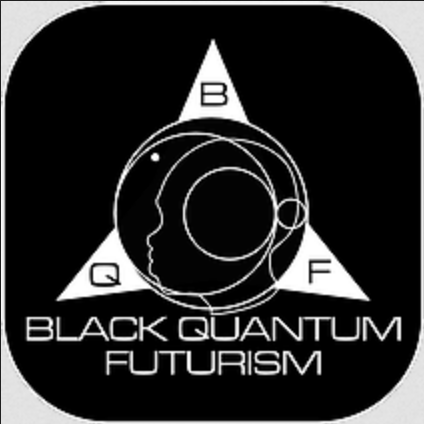
Black Quantum Futurism logo
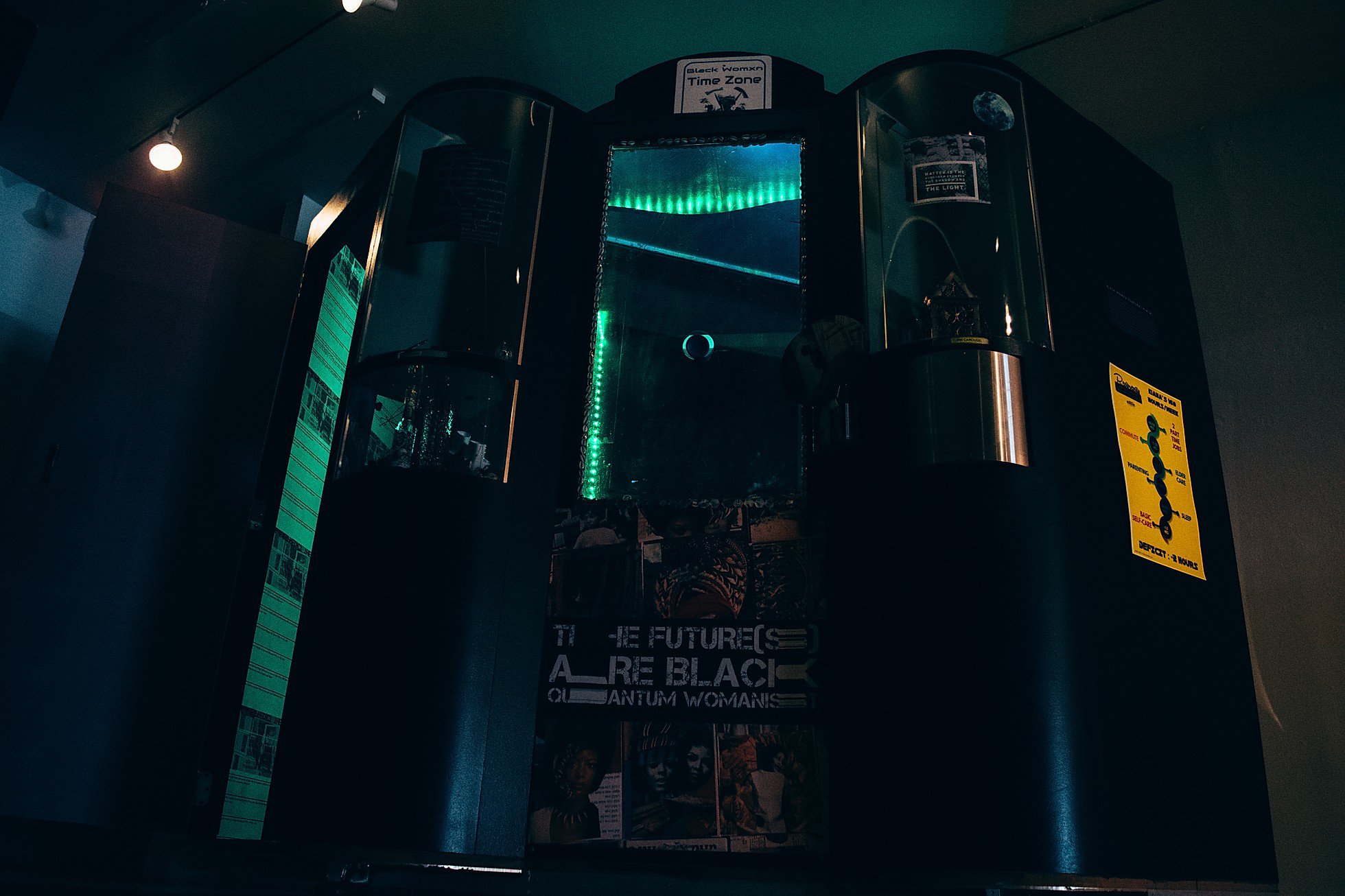
Image from https://www.blackquantumfuturism.com/

Image from https://www.blackquantumfuturism.com/
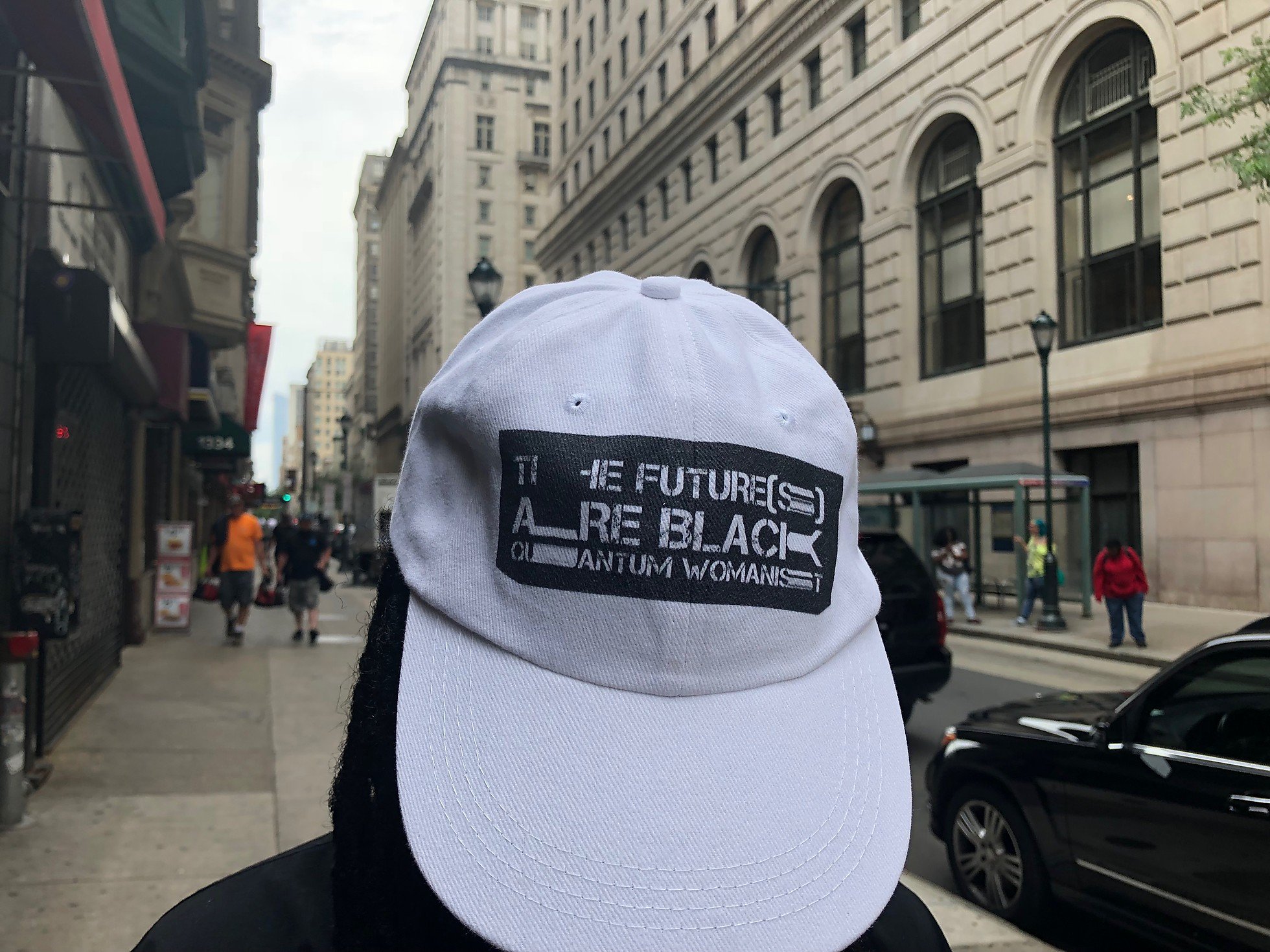
Image from https://www.blackquantumfuturism.com/

Image from https://www.blackquantumfuturism.com/
Black Quantum Futurism (BQF) is a new approach to living and experiencing reality by way of the manipulation of space-time in order to see into possible futures, and/or collapse space-time into a desired future in order to bring about that future’s reality. This vision and practice derives its facets, tenets, and qualities from quantum physics and Black/African cultural traditions of consciousness, time, and space. Under a BQF intersectional time orientation, the past and future are not cut off from the present—both dimensions have influence over the whole of our lives, who we are and who we become at any particular point in space-time. Through various writing, music, film, visual art, and creative research projects, BQF Collective also explores personal, cultural, familial, and communal cycles of experience, and solutions for transforming negative cycles into positive ones using artistic and holistic methods of healing. Our work focuses on recovery, collection, and preservation of communal memories, histories, and stories.
2015, Camae Ayewa and Rasheedah Phillips, https://www.blackquantumfuturism.com/; referred by Fei Liu and Salome Asega
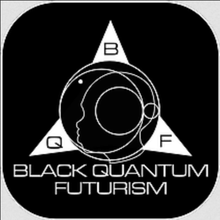
Black Quantum Futurism logo
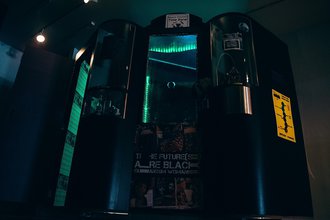
Image from https://www.blackquantumfuturism.com/

Image from https://www.blackquantumfuturism.com/
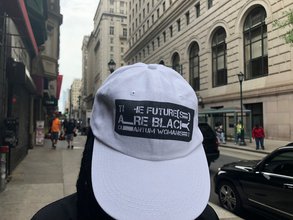
Image from https://www.blackquantumfuturism.com/

Image from https://www.blackquantumfuturism.com/
(483)
2015
Collection and the Cloud
Amelia Abreu
As an archivist, what shook me so deeply in [Vint] Cerf’s comments was his disconnect with the political economies of internet content production, or content production in history. The concept of a “[digital] dark age” implies that there is a singular body of canonical knowledge worth preserving, evoking an idea of erasure from history that’s familiar to anyone else besides a distinguished white man accustomed to historical centrality. For everyone else, erasure from history is a political struggle. Even today, women, people of color, transgender and disabled people, sex workers, care workers are all struggling to have their stories told and represented fairly. Any discussion of internet archiving has to, at some point, confront this problem: How do we talk about the politics of cultural records? If we cannot preserve everything, who defines what is worth saving? […] In the culture of surveillance, evidence collection is never-ending, a shadow to every activity.
2015, Amelia Abreu, New Inquiry, March 9, 2015, https://thenewinquiry.com/the-collection-and-the-cloud/; discovered in Morehshin Allahyari’s Radical Outside syllabus (x)
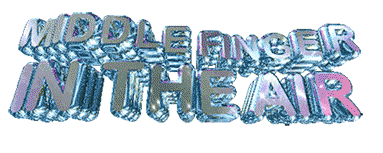
artifact from Collection and the Cloud essay
As an archivist, what shook me so deeply in [Vint] Cerf’s comments was his disconnect with the political economies of internet content production, or content production in history. The concept of a “[digital] dark age” implies that there is a singular body of canonical knowledge worth preserving, evoking an idea of erasure from history that’s familiar to anyone else besides a distinguished white man accustomed to historical centrality. For everyone else, erasure from history is a political struggle. Even today, women, people of color, transgender and disabled people, sex workers, care workers are all struggling to have their stories told and represented fairly. Any discussion of internet archiving has to, at some point, confront this problem: How do we talk about the politics of cultural records? If we cannot preserve everything, who defines what is worth saving? […] In the culture of surveillance, evidence collection is never-ending, a shadow to every activity.
2015, Amelia Abreu, New Inquiry, March 9, 2015, https://thenewinquiry.com/the-collection-and-the-cloud/; discovered in Morehshin Allahyari’s Radical Outside syllabus (x)
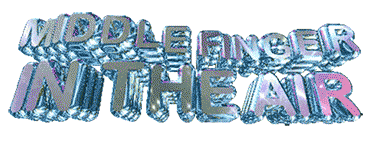
artifact from Collection and the Cloud essay
(484)
2015
Abortion Drone
Women on Web
The first flight of the Abortion Drone was in Poland in 2015. The drone departed from Germany and landed at the opposite side of the river in Slubice, Poland. While the drones were crossing the German/Polish border, the German Police tried to intervene but the drone pilots were able to safely land the drones at the Polish side. Two Polish women swallowed the abortion pills. The German police confiscated the drone controllers and personal iPads. They claim there was a violation of the Arzneimittel gesetz. After an extensive investigation charges were dropped in May 2016.
2015, Women on Web, https://www.womenonweb.org/en/page/10677/abortion-drone; excerpt from Women on Waves & Collaborators, “Abortion Drone,” in Disobedient Electronics: Protest, ed. Garnet Hertz ([Vancouver]: Garnet Hertz, 2018), p. 4; referred by Melanie Hoff
https://www.are.na/block/7894641
Germany, Poland

Disobedient Objects: Protest, Abortion Drone, page spread 3–4, https://www.are.na/block/7894641
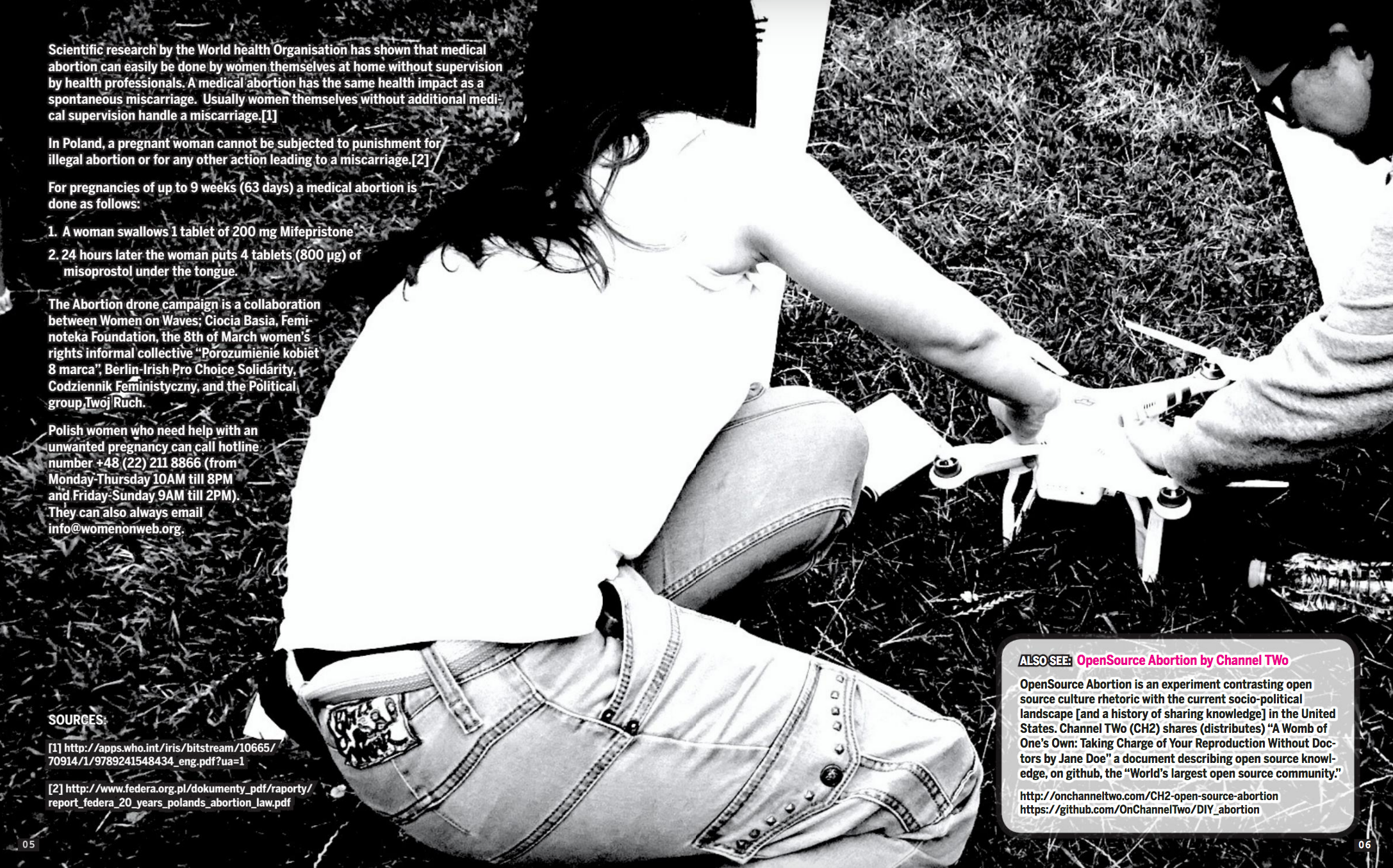
Disobedient Objects: Protest, Abortion Drone, page spread 5–6, https://www.are.na/block/7894641
The first flight of the Abortion Drone was in Poland in 2015. The drone departed from Germany and landed at the opposite side of the river in Slubice, Poland. While the drones were crossing the German/Polish border, the German Police tried to intervene but the drone pilots were able to safely land the drones at the Polish side. Two Polish women swallowed the abortion pills. The German police confiscated the drone controllers and personal iPads. They claim there was a violation of the Arzneimittel gesetz. After an extensive investigation charges were dropped in May 2016.
2015, Women on Web, https://www.womenonweb.org/en/page/10677/abortion-drone; excerpt from Women on Waves & Collaborators, “Abortion Drone,” in Disobedient Electronics: Protest, ed. Garnet Hertz ([Vancouver]: Garnet Hertz, 2018), p. 4; referred by Melanie Hoff
https://www.are.na/block/7894641
Germany, Poland

Disobedient Objects: Protest, Abortion Drone, page spread 3–4, https://www.are.na/block/7894641
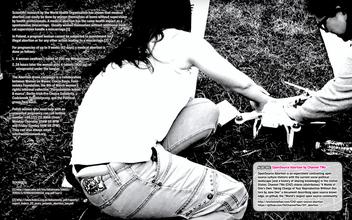
Disobedient Objects: Protest, Abortion Drone, page spread 5–6, https://www.are.na/block/7894641
(485)
2015
Feminist Surveillance Studies
Rachel E. Dubrofsky, Shoshana Amielle Magnet
Part of our task is recuperative: to point out that there has been work on surveillance done by feminists by some time. As well, we take as our charge to highlight areas where a focus on surveillance requires explicit attention to critical feminist concerns. The “critical” part of our project—which should understood hereafter as implicit in our use of the term feminist—hails from a critical tradition that has at its core an activist and interventionist agenda, and a questioning of the taking-for-granted, of what is often mundane and seamless, with a profound sense that what goes unquestioned can be dangerous, particularly for disenfranchised bodies. Our critical feminist approach involves a feminist praxis that centers intersectionality. We argue that surveillance is inseparable from what feminist theorist Sherene Razack (1998) calls interlocking oppressions, ones that are often integral to the structures that underlie our culture.
2015, Rachel E. Dubrofsky and Shoshana Amielle Magnet, eds. (Durham, NC: Duke University Press, 2015); excerpt from Rachel E. Dubrofsky and Shoshana Amielle Magnet, introduction to Dubrofsky and Magnet, Feminist Surveillance Studies, p. 3
Contributors include Seantel Anaïs, Mark Andrejevic, Paisley Currah, Sayantani DasGupta, Rachel Hall, Yasmin Jiwani, Laura Hyun Yi Kang, Ummni Khan, Kelli Moore, Lisa Jean Moore, Lisa Nakamura, Dorothy Roberts, Andrea Smith, Kevin Walby, and Megan M. Wood.
https://www.dukeupress.edu/Feminist-Surveillance-Studies
Part of our task is recuperative: to point out that there has been work on surveillance done by feminists by some time. As well, we take as our charge to highlight areas where a focus on surveillance requires explicit attention to critical feminist concerns. The “critical” part of our project—which should understood hereafter as implicit in our use of the term feminist—hails from a critical tradition that has at its core an activist and interventionist agenda, and a questioning of the taking-for-granted, of what is often mundane and seamless, with a profound sense that what goes unquestioned can be dangerous, particularly for disenfranchised bodies. Our critical feminist approach involves a feminist praxis that centers intersectionality. We argue that surveillance is inseparable from what feminist theorist Sherene Razack (1998) calls interlocking oppressions, ones that are often integral to the structures that underlie our culture.
2015, Rachel E. Dubrofsky and Shoshana Amielle Magnet, eds. (Durham, NC: Duke University Press, 2015); excerpt from Rachel E. Dubrofsky and Shoshana Amielle Magnet, introduction to Dubrofsky and Magnet, Feminist Surveillance Studies, p. 3
Contributors include Seantel Anaïs, Mark Andrejevic, Paisley Currah, Sayantani DasGupta, Rachel Hall, Yasmin Jiwani, Laura Hyun Yi Kang, Ummni Khan, Kelli Moore, Lisa Jean Moore, Lisa Nakamura, Dorothy Roberts, Andrea Smith, Kevin Walby, and Megan M. Wood.
https://www.dukeupress.edu/Feminist-Surveillance-Studies
(486)
2015
Gender, Sexuality and the Internet: 15 Feminist Principles of the Internet
Feminism in India (FII)
In a bid to reframe the conversation, the Global Meeting held in Malaysia (An evolving document: developed at the Gender, Sexuality and the Internet Meeting organized by the Association for Progressive Communications 13-15 April, 2014) used a collaborative process to ask the question: “As feminists, what kind of internet do we want, and what will it take for us to achieve it?” The first two principles are: 1. A feminist internet starts with and works towards empowering more women and queer persons—in all our diversities—to dismantle the patriarchy. This includes universal, affordable, unfettered, unconditional and equal access to the internet. 2. A feminist internet is an extension, reflection and continuum of our movements and resistance in other spaces, public and private. Our agency lies in us deciding as individuals and collectives what aspects of our lives to politicize and/or publicize on the internet.
2015, Feminism in India (FII), January 29, 2015, https://feminisminindia.com/2015/01/29/15-principles-of-feminist-internet/
In a bid to reframe the conversation, the Global Meeting held in Malaysia (An evolving document: developed at the Gender, Sexuality and the Internet Meeting organized by the Association for Progressive Communications 13-15 April, 2014) used a collaborative process to ask the question: “As feminists, what kind of internet do we want, and what will it take for us to achieve it?” The first two principles are: 1. A feminist internet starts with and works towards empowering more women and queer persons—in all our diversities—to dismantle the patriarchy. This includes universal, affordable, unfettered, unconditional and equal access to the internet. 2. A feminist internet is an extension, reflection and continuum of our movements and resistance in other spaces, public and private. Our agency lies in us deciding as individuals and collectives what aspects of our lives to politicize and/or publicize on the internet.
2015, Feminism in India (FII), January 29, 2015, https://feminisminindia.com/2015/01/29/15-principles-of-feminist-internet/
(487)
2015
Trouble with White Feminism: Whiteness, Digital Feminism and the Intersectional Internet
Jessie Daniels
In August, 2013 Mikki Kendall writer and pop culture analyst, started the hashtag #SolidarityisforWhiteWomen as a form of cyberfeminist activism directed at the predominantly white feminist activists and bloggers at sites like Feministing, Jezebel and Pandagon who failed to acknowledge the racist, sexist behavior of one their frequent contributors. Kendall’s hashtag activism quickly began trending and reignited a discussion about the trouble with white feminism. A number of journalists have excoriated Kendall specifically, and women of color more generally, for contributing to a “toxic” form of feminism. Yet what remains unquestioned in these journalistic accounts and in the scholarship to date, is the dominance of white women as architects and defenders of a framework of white feminism—not just in the second wave but today, in the digital era. […] I offer a critique of white feminisms as it plays out on the intersectional Internet.
2015, Jessie Daniels (unpublished manuscript, February 16, 2015); excerpt p. 2
https://www.are.na/block/7908367
In August, 2013 Mikki Kendall writer and pop culture analyst, started the hashtag #SolidarityisforWhiteWomen as a form of cyberfeminist activism directed at the predominantly white feminist activists and bloggers at sites like Feministing, Jezebel and Pandagon who failed to acknowledge the racist, sexist behavior of one their frequent contributors. Kendall’s hashtag activism quickly began trending and reignited a discussion about the trouble with white feminism. A number of journalists have excoriated Kendall specifically, and women of color more generally, for contributing to a “toxic” form of feminism. Yet what remains unquestioned in these journalistic accounts and in the scholarship to date, is the dominance of white women as architects and defenders of a framework of white feminism—not just in the second wave but today, in the digital era. […] I offer a critique of white feminisms as it plays out on the intersectional Internet.
2015, Jessie Daniels (unpublished manuscript, February 16, 2015); excerpt p. 2
https://www.are.na/block/7908367
(488)
2015–
2016
Open Source Gendercodes
Ryan Hammond
Open Source Gendercodes (OSG) is a project focused on developing an open source platform for the production of sex hormones. The development of a transgenic plant that could allow ‘laypeople’ to grow sex hormones would not only call into question the cultural and institutional frameworks that govern queer and trans bodies, it would also challenge the current system of pharmaceutical production. Can we imagine a communal system of pharmaceutical production in which biological materials are collectively owned?
I have consulted with FBI agents who work specifically with biohacking labs, and what I’m doing is legal. Once I get to the point of extracting hormones from plants for human use, there are legal and regulatory constraints that I will need to work within. My goal is to make sex hormones more accessible to queers, trans people, gender-hackers, and anyone who could benefit from more affordable access. This work is a protest against the pathologization of gender variation and a proposal for an alternative to the privatized pharmaceutical industry.
2015, Rian Ciela Hammond, www.opensourcegendercodes.com/projects/osg
http://www.ryanhammond.us/oldversion/osg.html
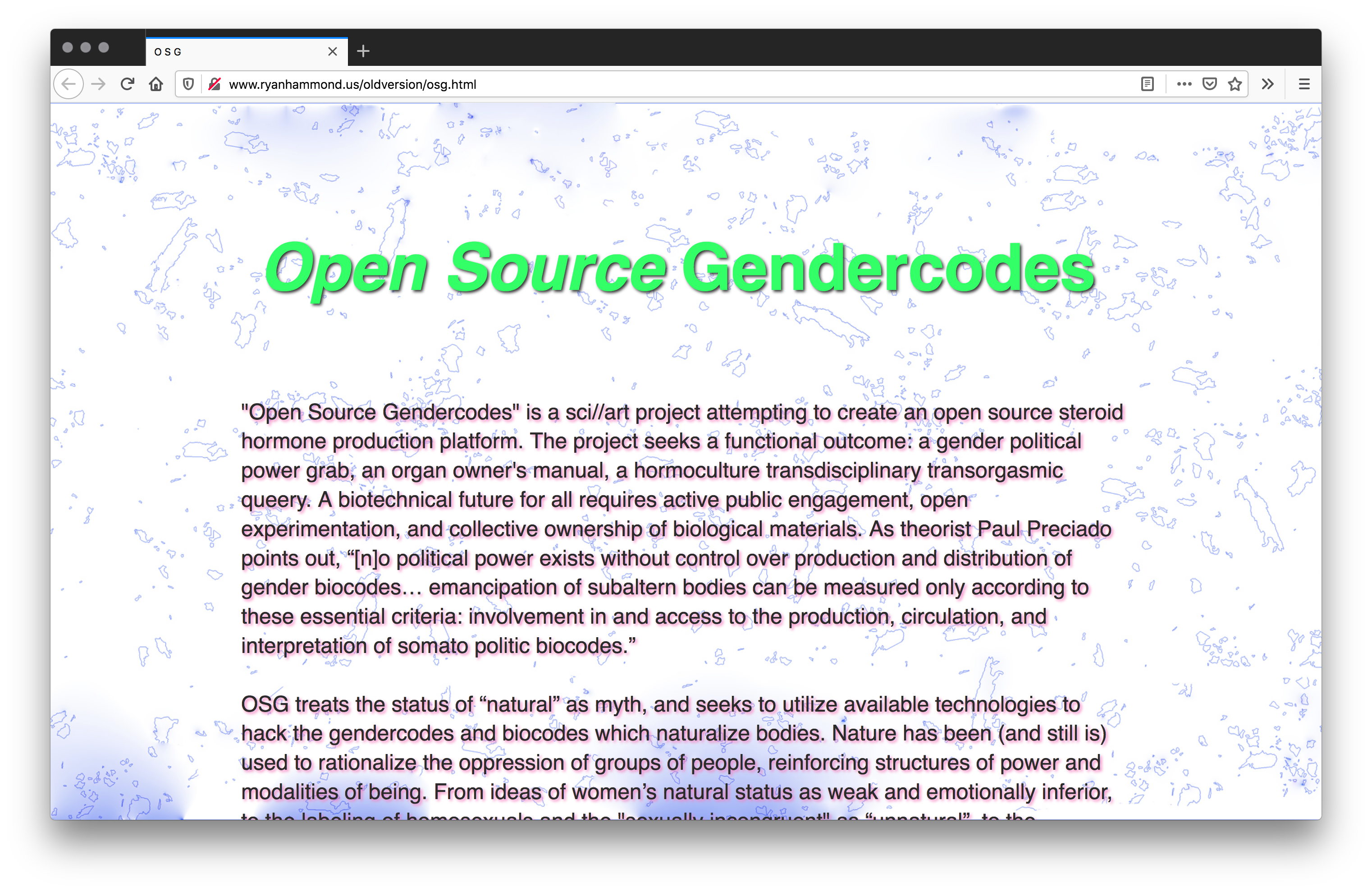
Screenshot, 2020, Firefox v76.0.1 on Mac OS 10.13.3; http://www.ryanhammond.us/oldversion/osg.html
Open Source Gendercodes (OSG) is a project focused on developing an open source platform for the production of sex hormones. The development of a transgenic plant that could allow ‘laypeople’ to grow sex hormones would not only call into question the cultural and institutional frameworks that govern queer and trans bodies, it would also challenge the current system of pharmaceutical production. Can we imagine a communal system of pharmaceutical production in which biological materials are collectively owned?
I have consulted with FBI agents who work specifically with biohacking labs, and what I’m doing is legal. Once I get to the point of extracting hormones from plants for human use, there are legal and regulatory constraints that I will need to work within. My goal is to make sex hormones more accessible to queers, trans people, gender-hackers, and anyone who could benefit from more affordable access. This work is a protest against the pathologization of gender variation and a proposal for an alternative to the privatized pharmaceutical industry.
2015, Rian Ciela Hammond, www.opensourcegendercodes.com/projects/osg
http://www.ryanhammond.us/oldversion/osg.html
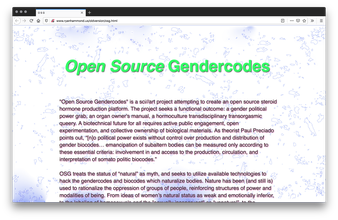
Screenshot, 2020, Firefox v76.0.1 on Mac OS 10.13.3; http://www.ryanhammond.us/oldversion/osg.html
(489)
2015
Megalia
Angry at the MERS accusations, some women responded by posting messages on the same message board, adopting a controversial practice female activists call “mirroring,” or mimicking the language men use against women. They called men “kimchi men,” among other epithets, and mocked them for having “6.9cm penises.” These women broke out of DC Inside to create their own site and Megalian.com was born. It was an instant provocation: The logo of the site shows a hand with the thumb and index finger close together to suggest a small penis.
Many, including some feminists, say Megalia’s tactics have opened the group up to accusations of misandry, and exacerbate the gender wars. […] But members of the group are embracing the upheaval. “Before that, feminism was very boring and academic in Korea,” says a Megalia activist, a graduate of the elite Ewha Women’s University in Seoul who works for a foreign company and who spoke to Quartz on the condition of anonymity. “2015 was an incredible year.”
2015, https://web.archive.org/web/20150810001818/http://www.megalian.com/; excerpt from Isabella Steger, “An Epic Battle between Feminism and Deep-Seated Misogyny is under way in South Korea,” Quartz, October 23, 2016, https://qz.com/801067/an-epic-battle-between-feminism-and-deep-seated-misogyny-is-under-way-in-south-korea/; referred by Je Sung Lee
Editor’s Note: When I first introduced this project in graduate school, my classmate Je Sung Lee informed me about the Korean collective Megalia. Because they had been accused of misandry, I was unsure if their ethos aligned with what I understood as a cyberfeminist ideology. When I presented this uncertainty, among others, at a Berkman Klein Center for the Internet and Society fellows meeting, Levin Kim advocated for the group’s inclusion, emphasizing that different notions of feminism vary by region and cultural context. —MS
https://femiwiki.com/w/Megalia
South Korea
Angry at the MERS accusations, some women responded by posting messages on the same message board, adopting a controversial practice female activists call “mirroring,” or mimicking the language men use against women. They called men “kimchi men,” among other epithets, and mocked them for having “6.9cm penises.” These women broke out of DC Inside to create their own site and Megalian.com was born. It was an instant provocation: The logo of the site shows a hand with the thumb and index finger close together to suggest a small penis.
Many, including some feminists, say Megalia’s tactics have opened the group up to accusations of misandry, and exacerbate the gender wars. […] But members of the group are embracing the upheaval. “Before that, feminism was very boring and academic in Korea,” says a Megalia activist, a graduate of the elite Ewha Women’s University in Seoul who works for a foreign company and who spoke to Quartz on the condition of anonymity. “2015 was an incredible year.”
2015, https://web.archive.org/web/20150810001818/http://www.megalian.com/; excerpt from Isabella Steger, “An Epic Battle between Feminism and Deep-Seated Misogyny is under way in South Korea,” Quartz, October 23, 2016, https://qz.com/801067/an-epic-battle-between-feminism-and-deep-seated-misogyny-is-under-way-in-south-korea/; referred by Je Sung Lee
Editor’s Note: When I first introduced this project in graduate school, my classmate Je Sung Lee informed me about the Korean collective Megalia. Because they had been accused of misandry, I was unsure if their ethos aligned with what I understood as a cyberfeminist ideology. When I presented this uncertainty, among others, at a Berkman Klein Center for the Internet and Society fellows meeting, Levin Kim advocated for the group’s inclusion, emphasizing that different notions of feminism vary by region and cultural context. —MS
https://femiwiki.com/w/Megalia
South Korea
(490)
2015
BUFU
Jazmin Jones, Jiun Kwon, Tsige Tafesse, Katherine Tom, Suhyun Choi
BUFU IS BY US FOR US // WYFY WITH YOU FOR YOU. A PROJECT BASED COLLECTIVE INTERESTED IN SOLIDARITY AMONGST US, CO-CREATING WITH YOU EXPERIMENTAL MODELS OF ORGANIZING & MAKING A PRACTICE OF PRACTICING LIBERATION & LOVE
In Fall 2015, BUFU initially began as a collaborative living archive centered around (pan)Black and (pan)Asian cultural and political relationships. “We, the founders of this project, are a collective of queer, femme and non-binary, Black and East-Asian artists and organizers. Our goal is to facilitate a global conversation on the cultural and political relationships between Black & Asian diasporas, with an emphasis on building solidarity, de-centering whiteness, and resurfacing our deeply interconnected and complicated histories.”
2015, Jazmin Jones, Jiun Kwon, Tsige Tafesse, Katherine Tom, and Suhyun Choi, https://www.bufubyusforus.com/

Portrait of BUFU: Jazmin Jones, Jiun Kwon, Tsige Tafesse, Katherine Tom, and Suhyun Choi
BUFU IS BY US FOR US // WYFY WITH YOU FOR YOU. A PROJECT BASED COLLECTIVE INTERESTED IN SOLIDARITY AMONGST US, CO-CREATING WITH YOU EXPERIMENTAL MODELS OF ORGANIZING & MAKING A PRACTICE OF PRACTICING LIBERATION & LOVE
In Fall 2015, BUFU initially began as a collaborative living archive centered around (pan)Black and (pan)Asian cultural and political relationships. “We, the founders of this project, are a collective of queer, femme and non-binary, Black and East-Asian artists and organizers. Our goal is to facilitate a global conversation on the cultural and political relationships between Black & Asian diasporas, with an emphasis on building solidarity, de-centering whiteness, and resurfacing our deeply interconnected and complicated histories.”
2015, Jazmin Jones, Jiun Kwon, Tsige Tafesse, Katherine Tom, and Suhyun Choi, https://www.bufubyusforus.com/

Portrait of BUFU: Jazmin Jones, Jiun Kwon, Tsige Tafesse, Katherine Tom, and Suhyun Choi
(491)
2015
Datos Protegidos [Protected Data]
[Datos Protegidos es una fundación sin fines de lucro creada en 2015 con el objeto de promover la protección de los datos personales y la privacidad. Con el tiempo, hemos sumado la promoción de la libertad de expresión, la inclusión de una perspectiva de género sobre las tecnologías y el fortalecimiento de la seguridad digital. […] Velamos por una Internet abierta, empática y transparente. Realizamos investigaciones, proyectos, asesorías legales, litigio estratégico, talleres de formación y capacitación. También observamos, informamos y levantamos alertas sobre estos temas con foco en la protección de derechos fundamentales.
[Protected Data is a] non-profit foundation created in 2015 in order to promote the protection of personal data and privacy. Over time, we have added the promotion of freedom of expression, the inclusion of a gender perspective on technologies and the strengthening of digital security. […] We ensure an open, empathetic and transparent Internet. We carry out research, projects, legal advice, strategic litigation, training workshops and training. We also observe, inform and raise alerts on these issues with a focus on the protection of fundamental rights.
Chile

image from https://datosprotegidos.org/
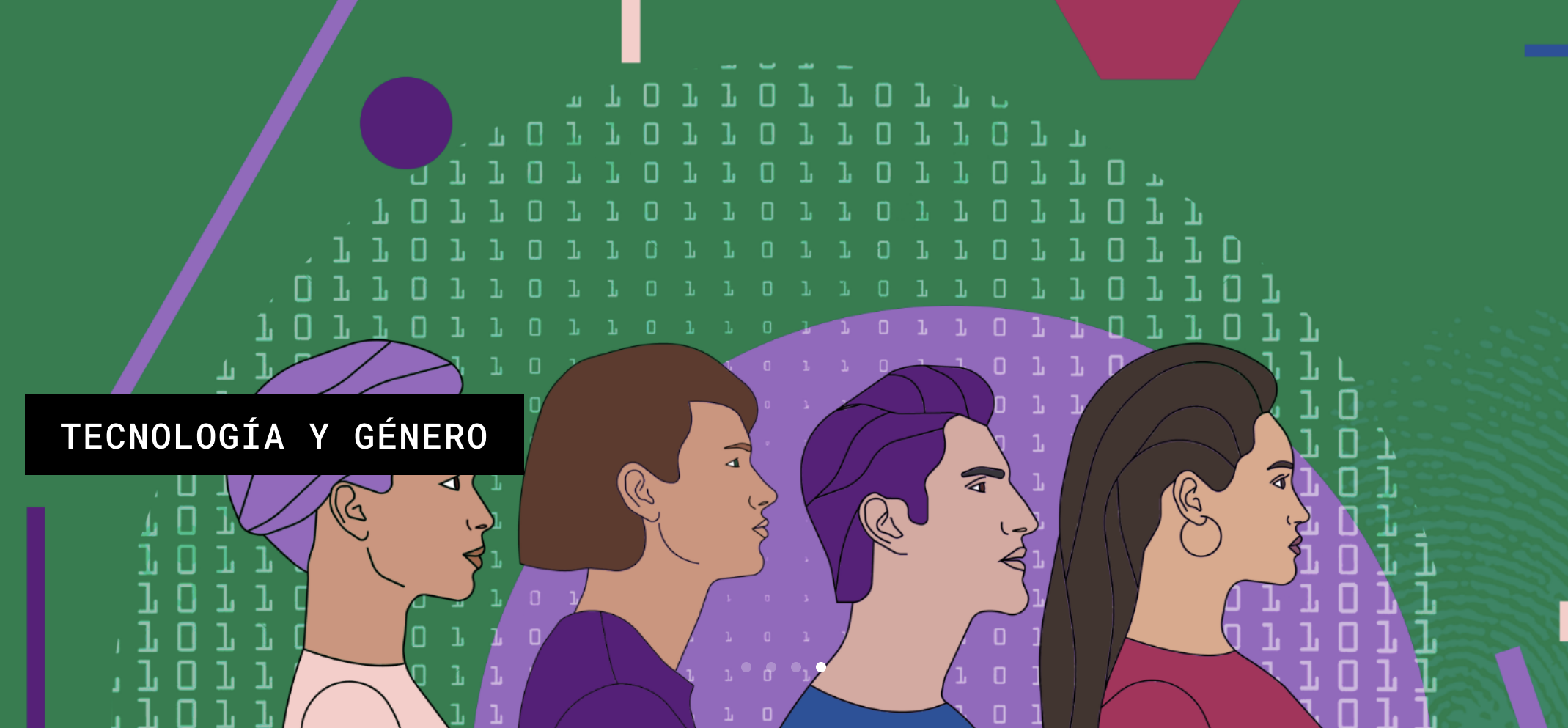
image from https://datosprotegidos.org/

image from https://datosprotegidos.org/
[Datos Protegidos es una fundación sin fines de lucro creada en 2015 con el objeto de promover la protección de los datos personales y la privacidad. Con el tiempo, hemos sumado la promoción de la libertad de expresión, la inclusión de una perspectiva de género sobre las tecnologías y el fortalecimiento de la seguridad digital. […] Velamos por una Internet abierta, empática y transparente. Realizamos investigaciones, proyectos, asesorías legales, litigio estratégico, talleres de formación y capacitación. También observamos, informamos y levantamos alertas sobre estos temas con foco en la protección de derechos fundamentales.
[Protected Data is a] non-profit foundation created in 2015 in order to promote the protection of personal data and privacy. Over time, we have added the promotion of freedom of expression, the inclusion of a gender perspective on technologies and the strengthening of digital security. […] We ensure an open, empathetic and transparent Internet. We carry out research, projects, legal advice, strategic litigation, training workshops and training. We also observe, inform and raise alerts on these issues with a focus on the protection of fundamental rights.
Chile

image from https://datosprotegidos.org/

image from https://datosprotegidos.org/

image from https://datosprotegidos.org/
(492)
2015–
2019
Chicas en Tecnología [Girls in Technology]
Melina Masnatta, Carolina Hadad, Sofía Contreras, Mariana Varela
Existe una brecha de género en disciplinas relacionadas con la ciencia y la tecnología, en Argentina, la región y en el mundo. A nivel regional, el acceso a Internet y la alfabetización digital son desafíos pendientes como un derecho a garantizar y una necesidad teniendo en cuenta que la tecnología es un área en expansión. En este contexto, las mujeres latinoamericanas se encuentran en desventaja por contar con mayores barreras sociales y culturales. Según investigaciones en Argentina: las carreras de CTIM (Ciencia, Tecnología, Informática y Matemática), cuentan solo con un 33% de inscripciones de mujeres y en carreras vinculadas a programación, el número se reduce a 16%. Si bien los estereotipos de género se construyen a temprana edad, el interés por desarrollarse en estos ámbitos termina de definirse en la adolescencia. En una era donde la tecnología está transformando las economías y sociedades, las voces de las mujeres y sus perspectivas necesitan ser incluidas.
There is a gender gap in disciplines related to science and technology, in Argentina, the region and in the world. At the regional level, Internet access and digital literacy are pending challenges as a right to guarantee and a necessity considering that technology is an expanding area. In this context, Latin American women are at a disadvantage due to greater social and cultural barriers. According to research in Argentina: STEM careers (Science, Technology, Computer Science and Mathematics), have only 33% of enrollments of women and in programs related to programming, the number is reduced to 16%. Although gender stereotypes are built at an early age, the interest in developing in these areas ends up being defined in adolescence. In an era where technology is transforming economies and societies, women’s voices and their perspectives need to be included.
2015, Melina Masnatta, Carolina Hadad, Sofía Contreras, and Mariana Varela, https://www.chicasentecnologia.org/
https://www.chicasentecnologia.org/
Argentina
Existe una brecha de género en disciplinas relacionadas con la ciencia y la tecnología, en Argentina, la región y en el mundo. A nivel regional, el acceso a Internet y la alfabetización digital son desafíos pendientes como un derecho a garantizar y una necesidad teniendo en cuenta que la tecnología es un área en expansión. En este contexto, las mujeres latinoamericanas se encuentran en desventaja por contar con mayores barreras sociales y culturales. Según investigaciones en Argentina: las carreras de CTIM (Ciencia, Tecnología, Informática y Matemática), cuentan solo con un 33% de inscripciones de mujeres y en carreras vinculadas a programación, el número se reduce a 16%. Si bien los estereotipos de género se construyen a temprana edad, el interés por desarrollarse en estos ámbitos termina de definirse en la adolescencia. En una era donde la tecnología está transformando las economías y sociedades, las voces de las mujeres y sus perspectivas necesitan ser incluidas.
There is a gender gap in disciplines related to science and technology, in Argentina, the region and in the world. At the regional level, Internet access and digital literacy are pending challenges as a right to guarantee and a necessity considering that technology is an expanding area. In this context, Latin American women are at a disadvantage due to greater social and cultural barriers. According to research in Argentina: STEM careers (Science, Technology, Computer Science and Mathematics), have only 33% of enrollments of women and in programs related to programming, the number is reduced to 16%. Although gender stereotypes are built at an early age, the interest in developing in these areas ends up being defined in adolescence. In an era where technology is transforming economies and societies, women’s voices and their perspectives need to be included.
2015, Melina Masnatta, Carolina Hadad, Sofía Contreras, and Mariana Varela, https://www.chicasentecnologia.org/
https://www.chicasentecnologia.org/
Argentina
(493)
2015
Coding Rights: Translating Human Rights into Codes
Joana Varon
Somos uma organização que traz um olhar feminista interseccional para defender os direitos humanos no desenvolvimento, regulação e uso das tecnologias. Atuamos em rede, usamos criatividade e conhecimento hacker para questionar o presente e reimaginar um futuro pautado por valores transfeministas e decoloniais.
We are an organisation bringing an intersectional feminist approach to defend human rights in the development, regulation and use of technologies. We act collectively and in networks, use creativity and hacker knowledge to question the present and reimagine a future based on transfeminist and decolonial values.
2015, Joana Varon, https://www.codingrights.org
Brazil
Somos uma organização que traz um olhar feminista interseccional para defender os direitos humanos no desenvolvimento, regulação e uso das tecnologias. Atuamos em rede, usamos criatividade e conhecimento hacker para questionar o presente e reimaginar um futuro pautado por valores transfeministas e decoloniais.
We are an organisation bringing an intersectional feminist approach to defend human rights in the development, regulation and use of technologies. We act collectively and in networks, use creativity and hacker knowledge to question the present and reimagine a future based on transfeminist and decolonial values.
2015, Joana Varon, https://www.codingrights.org
Brazil
(494)
2015
Hacking Culture, Not Devices: Access and Recognition in Feminist Hackerspaces
Sarah Fox, Rachel Rose Ulgado, Daniela K. Rosner
On the face of it, many tools within these sites seem at home in a conventional hackerspace. We observed resources for hardware hacking such as soldering irons, laptops, and what one member called a “documentation station,” a tripod-mounted webcam with a microscope and light positioned over an electronics workbench for digitally capturing and sharing video of microelectronics tinkering. As in other recent accounts, analogue tools sat next to these devices. […] Such juxtapositions call into question the kinds of activity identified as ‘technology’ in line with common definitions of do-it-yourself culture that contest mainstream technology development. In addition to challenging technology conventions, we found the notion of hacking as dabbling or tinkering trumped by the seriousness and care with which members approached their non-digital work. […] This merging of hackerspace activities with careful craftwork suggests an intentional entanglement of hacking and practices traditionally associated with women.
2015, Sarah Fox, Rachel Rose Ulgado, and Daniela K. Rosner, in Proceedings of the 18th ACM Conference on Computer Supported Cooperative Work & Social Computing, Vancouver, BC, March 14–18, 2015 (New York: Association for Computing Machinery, 2015): pp. 56–68; excerpt pp. 61–62; referred by Sarah Fox
https://www.are.na/block/7798981
On the face of it, many tools within these sites seem at home in a conventional hackerspace. We observed resources for hardware hacking such as soldering irons, laptops, and what one member called a “documentation station,” a tripod-mounted webcam with a microscope and light positioned over an electronics workbench for digitally capturing and sharing video of microelectronics tinkering. As in other recent accounts, analogue tools sat next to these devices. […] Such juxtapositions call into question the kinds of activity identified as ‘technology’ in line with common definitions of do-it-yourself culture that contest mainstream technology development. In addition to challenging technology conventions, we found the notion of hacking as dabbling or tinkering trumped by the seriousness and care with which members approached their non-digital work. […] This merging of hackerspace activities with careful craftwork suggests an intentional entanglement of hacking and practices traditionally associated with women.
2015, Sarah Fox, Rachel Rose Ulgado, and Daniela K. Rosner, in Proceedings of the 18th ACM Conference on Computer Supported Cooperative Work & Social Computing, Vancouver, BC, March 14–18, 2015 (New York: Association for Computing Machinery, 2015): pp. 56–68; excerpt pp. 61–62; referred by Sarah Fox
https://www.are.na/block/7798981
(495)
2015
Tor for Feminists
Fembot
Feminists have been doing digital, anonymous media praxis for a long time. The internet affords us many great opportunities, but also a larger footprint should we want to stay anonymous. The reasons for anonymity are clear: anti-racist and feminist activists are met with threats and acts of physical violence from social institutions with those types of power, while institutions with less purchase on physical violence rely on litigiousness. Anonymity is a great political tool.
That being said, there is no such thing as absolute anonymity. From server handshakes to video and keystroke surveillance, someone always knows—this should be your number one assumption. That being said, this post is dedicated to helping feminists understand how to do almost-anonymous (or resource intensive anonymity, from the perspective of institutions) activism.
2015, Fembot, https://fembot.adanewmedia.org/blog/2015/05/06/toolkit-anonymous/
Feminists have been doing digital, anonymous media praxis for a long time. The internet affords us many great opportunities, but also a larger footprint should we want to stay anonymous. The reasons for anonymity are clear: anti-racist and feminist activists are met with threats and acts of physical violence from social institutions with those types of power, while institutions with less purchase on physical violence rely on litigiousness. Anonymity is a great political tool.
That being said, there is no such thing as absolute anonymity. From server handshakes to video and keystroke surveillance, someone always knows—this should be your number one assumption. That being said, this post is dedicated to helping feminists understand how to do almost-anonymous (or resource intensive anonymity, from the perspective of institutions) activism.
2015, Fembot, https://fembot.adanewmedia.org/blog/2015/05/06/toolkit-anonymous/
(496)
2015
d0xxxing precautions
Fembot
If GamerGate and Wiki Harassment have taught us one thing, it’s that third-party trolls (who just like to see things get fucked up in general) will release the private information of anyone on any side of any public debate, just to watch the chaos that ensues. One way trollz facilitate this is through d0xxing, or worse, SWATing. Doxxing is the practice of releasing the private information of a person—home addresses, phone number, place of employment, and contact information of immediate relatives—on a site like pastebin, and then directing people there to harass the person. In its early days, the worst results of Doxxing included $1,000 pizza deliveries. It has since escalated to SWATing. Using your Doxxed info, people place a fake threatening call of mass violence to your local police so that they show up with SWAT and violently occupy your residence.
2015, Fembot, https://fembot.adanewmedia.org/blog/2015/05/31/d0xxxing-precautions/
If GamerGate and Wiki Harassment have taught us one thing, it’s that third-party trolls (who just like to see things get fucked up in general) will release the private information of anyone on any side of any public debate, just to watch the chaos that ensues. One way trollz facilitate this is through d0xxing, or worse, SWATing. Doxxing is the practice of releasing the private information of a person—home addresses, phone number, place of employment, and contact information of immediate relatives—on a site like pastebin, and then directing people there to harass the person. In its early days, the worst results of Doxxing included $1,000 pizza deliveries. It has since escalated to SWATing. Using your Doxxed info, people place a fake threatening call of mass violence to your local police so that they show up with SWAT and violently occupy your residence.
2015, Fembot, https://fembot.adanewmedia.org/blog/2015/05/31/d0xxxing-precautions/
(497)
2015
afrofuturism and #blackspring
adrienne maree brown
africans leaping off of slaver ships were afrofuturists.
slave era parents teaching their babies a foreign alphabet in the candlelit dirt were afrofuturists.
black women dissociating themselves through to tomorrow while being raped into motherhood were afrofuturists.
those who raised the children of violence and those who chose not to, all were predicting the future and articulating their choices.
slaves who ran to freedom, and slaves who ran to their deaths, were afrofuturists.
it is the emphasis on a tomorrow that centers the dignity of that seed, particularly in the face of extinction, that marks, for me, the afrofuturist
2015, adrienne maree brown (keynote speech, Afrofuturism: Designing New Narratives to Empower the African Diaspora conference, The New School, New York, NY, May 1, 2015); transcript from adrienne maree brown, “afrofuturism and #blackspring (new school, #afroturismtns) [sic],” May 2, 2015, http://adriennemareebrown.net/2015/05/02/afrofuturism-and-blackspring-new-school-afroturismtns/
africans leaping off of slaver ships were afrofuturists.
slave era parents teaching their babies a foreign alphabet in the candlelit dirt were afrofuturists.
black women dissociating themselves through to tomorrow while being raped into motherhood were afrofuturists.
those who raised the children of violence and those who chose not to, all were predicting the future and articulating their choices.
slaves who ran to freedom, and slaves who ran to their deaths, were afrofuturists.
it is the emphasis on a tomorrow that centers the dignity of that seed, particularly in the face of extinction, that marks, for me, the afrofuturist
2015, adrienne maree brown (keynote speech, Afrofuturism: Designing New Narratives to Empower the African Diaspora conference, The New School, New York, NY, May 1, 2015); transcript from adrienne maree brown, “afrofuturism and #blackspring (new school, #afroturismtns) [sic],” May 2, 2015, http://adriennemareebrown.net/2015/05/02/afrofuturism-and-blackspring-new-school-afroturismtns/
(498)
2015
AfroCROWD
Alice Backer
Afro Free Culture Crowdsourcing Wikimedia (AfroCROWD) is an initiative which seeks to increase awareness and the number of people of African descent who actively partake in the Wikimedia and free knowledge, culture and software movements. AfroCROWD has sensitized thousands in its target audience about free culture crowdsourcing and the need to close the multicultural and gender gaps in Wikipedia. AfroCROWD has also held monthly multilingual editathons in partnership with cultural institutions, galleries, libraries, archives, museums (GLAM), colleges, universities and many others including institutions at the United Nations and grassroots organizations.
2015, Alice Backer, www.afrocrowd.org

logo from https://en.wikipedia.org/wiki/AfroCrowd
Afro Free Culture Crowdsourcing Wikimedia (AfroCROWD) is an initiative which seeks to increase awareness and the number of people of African descent who actively partake in the Wikimedia and free knowledge, culture and software movements. AfroCROWD has sensitized thousands in its target audience about free culture crowdsourcing and the need to close the multicultural and gender gaps in Wikipedia. AfroCROWD has also held monthly multilingual editathons in partnership with cultural institutions, galleries, libraries, archives, museums (GLAM), colleges, universities and many others including institutions at the United Nations and grassroots organizations.
2015, Alice Backer, www.afrocrowd.org

logo from https://en.wikipedia.org/wiki/AfroCrowd
(499)
2015
Affixing Ceremony: Four Movements for Essex
Tiona Nekkia McClodden
With this work, I am affixing this introduction as well as [Essex] Hemphill’s work by extending it into the online space that Essex refers to in his cyberspace quote. I am also attempting to create a fixing ceremony or ritual presentation of Hemphill’s work that will invoke his spirit within cyberspace. Hemphill’s quote will serve as the foundation or script for this work. I am attempting to answer and explore the questions that Hemphill posed in this quote as it has given me insight into what Hemphill may have been thinking about in regard to how he could see or imagine himself functioning within the internet (cyberspace). Essex Hemphill made this statement and posed these questions at the Black Nations/Queer Nations? conference shortly before his death from complications from HIV/AIDS on November 4, 1995 in Philadelphia, PA. This year marks the 20th anniversary of his transition. In the creation of Affixing Ceremony: Four Movements for Essex, I wanted to bring him into cyberspace—a space of liminality—for him and his work to exist.
2015, Tiona Nekkia McClodden, https://www.tionam.com/affixingceremony#1
http://affixingceremony2015.tionam.com/
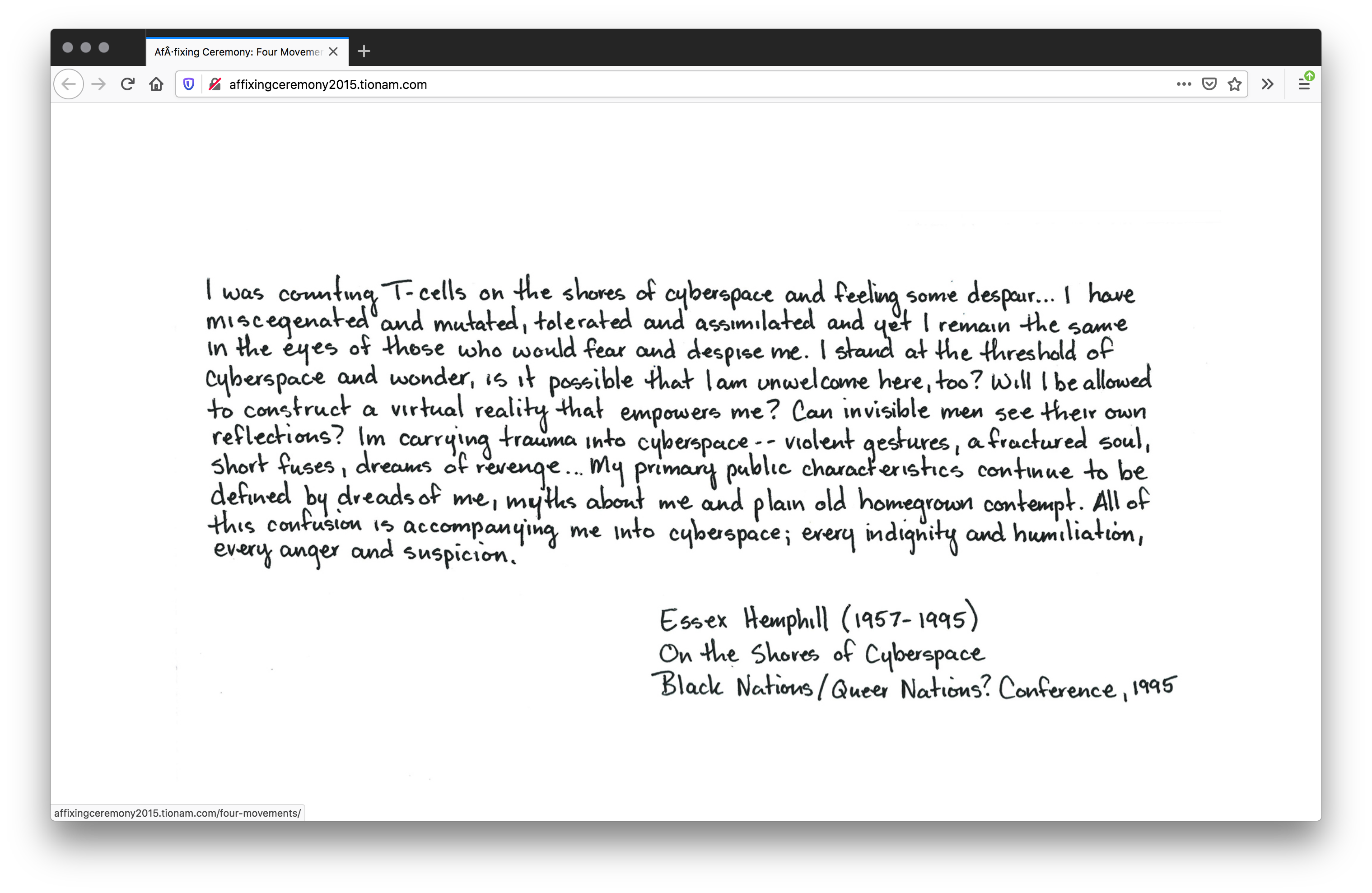
“© Tiona Nekkia McClodden 2018”, Screenshot, 2020, Firefox v76.0.1 on Mac OS 10.13.3; http://affixingceremony2015.tionam.com/
With this work, I am affixing this introduction as well as [Essex] Hemphill’s work by extending it into the online space that Essex refers to in his cyberspace quote. I am also attempting to create a fixing ceremony or ritual presentation of Hemphill’s work that will invoke his spirit within cyberspace. Hemphill’s quote will serve as the foundation or script for this work. I am attempting to answer and explore the questions that Hemphill posed in this quote as it has given me insight into what Hemphill may have been thinking about in regard to how he could see or imagine himself functioning within the internet (cyberspace). Essex Hemphill made this statement and posed these questions at the Black Nations/Queer Nations? conference shortly before his death from complications from HIV/AIDS on November 4, 1995 in Philadelphia, PA. This year marks the 20th anniversary of his transition. In the creation of Affixing Ceremony: Four Movements for Essex, I wanted to bring him into cyberspace—a space of liminality—for him and his work to exist.
2015, Tiona Nekkia McClodden, https://www.tionam.com/affixingceremony#1
http://affixingceremony2015.tionam.com/
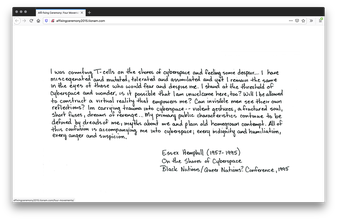
“© Tiona Nekkia McClodden 2018”, Screenshot, 2020, Firefox v76.0.1 on Mac OS 10.13.3; http://affixingceremony2015.tionam.com/
(500)
2015
Octavia’s Brood: Science Fiction Stories from Social Justice Movements
adrienne maree brown, Walidah Imarisha
Whenever we try to envision a world without war, without violence, without prisons, without capitalism, we are engaging in speculative fiction. All organizing is science fiction. Organizers and activists dedicate their lives to creating and envisioning another world, or many other worlds. […] In the years we have been working on this book, many folks have asked us what science fiction could possibly have to do with social justice organizing. And every time, we have responded, “Everything. Everything.” We want organizers and movement builders to be able to climb the vast space of possibility, to be birthing visionary stories. Using their everyday realities and experiences of changing the world, they can form the foundation for the fantastic, and we hope, build a future where the fantastic liberates the mundane.
2015, adrienne maree brown and Walidah Imarisha, eds. (Chico, CA: AK Press, 2015); excerpt from Walidah Imarisha, introduction to brown and Imarisha, Octavia’s Brood, p. 1
https://www.akpress.org/octavia-s-brood.html
Whenever we try to envision a world without war, without violence, without prisons, without capitalism, we are engaging in speculative fiction. All organizing is science fiction. Organizers and activists dedicate their lives to creating and envisioning another world, or many other worlds. […] In the years we have been working on this book, many folks have asked us what science fiction could possibly have to do with social justice organizing. And every time, we have responded, “Everything. Everything.” We want organizers and movement builders to be able to climb the vast space of possibility, to be birthing visionary stories. Using their everyday realities and experiences of changing the world, they can form the foundation for the fantastic, and we hope, build a future where the fantastic liberates the mundane.
2015, adrienne maree brown and Walidah Imarisha, eds. (Chico, CA: AK Press, 2015); excerpt from Walidah Imarisha, introduction to brown and Imarisha, Octavia’s Brood, p. 1
https://www.akpress.org/octavia-s-brood.html
(501)
2015
Is There Such a Thing as Feminist Technology?
Shivani Gupta
Thus, there are certain technologies that have been feminized—including reproductive technologies such as birth control or tampons. While some reproductive technologies can be liberating, they were invented by men, with the comfort of men—not women—in mind (Layne 2010). Thus, certain technologies have been specifically demarcated for women, which serve to further entrench gender stereotypes.
This gender stereotyping continues when women are warned against using technologies like computers and machines, which are either expensive or “complicated.” In fact, in rural societies in India, there is a common myth that a woman’s touch will destroy technology. So, let’s ask ourselves again: is technology indeed gender neutral if it serves to reinforce gender stereotypes and puts men at a greater privilege than women?
Gendered technology goes back to the Enlightenment, during which new inventions allowed for printing the written word, and men could now study the moon, stars, and galaxies. […] Technologies of the past have certainly been gendered—but contemporary technology is no less so.
2014, Shivani Gupta, Ignite - Global Fund for Women, http://ignite.globalfundforwomen.org/gallery/there-such-thing-feminist-technology
India
Thus, there are certain technologies that have been feminized—including reproductive technologies such as birth control or tampons. While some reproductive technologies can be liberating, they were invented by men, with the comfort of men—not women—in mind (Layne 2010). Thus, certain technologies have been specifically demarcated for women, which serve to further entrench gender stereotypes.
This gender stereotyping continues when women are warned against using technologies like computers and machines, which are either expensive or “complicated.” In fact, in rural societies in India, there is a common myth that a woman’s touch will destroy technology. So, let’s ask ourselves again: is technology indeed gender neutral if it serves to reinforce gender stereotypes and puts men at a greater privilege than women?
Gendered technology goes back to the Enlightenment, during which new inventions allowed for printing the written word, and men could now study the moon, stars, and galaxies. […] Technologies of the past have certainly been gendered—but contemporary technology is no less so.
2014, Shivani Gupta, Ignite - Global Fund for Women, http://ignite.globalfundforwomen.org/gallery/there-such-thing-feminist-technology
India
(502)
2015
NTU
Tabita Rezaire, Bogosi Sekhukhuni, Nolan Oswald Dennis
NTU is a South African based family and creative agency concerned with the spiritual futures of technology. Founded in 2015 by Nolan Oswald Dennis, Tabita Rezaire and Bogosi Sekhukhuni, NTU seeks to disseminate an awareness of African sciences and technologies. Interested in technologies of epistemic liberation and cultures of scientific enquiry, the group seeks to claim agency as advanced technological beings, consciously resisting co-option—internalised or imposed—from white, reptilian, heteronormative patriarchal imperial power structures. Drawing from African spiritual philosophies, NTU’s projects embrace the interdependency of the organic, spiritual and technological realms to restore energetic imbalances.
2015, Tabita Rezaire, Bogosi Sekhukhuni, and Nolan Oswald Dennis, https://tabitarezaire.com/ntu.html; referred by Melanie Hoff
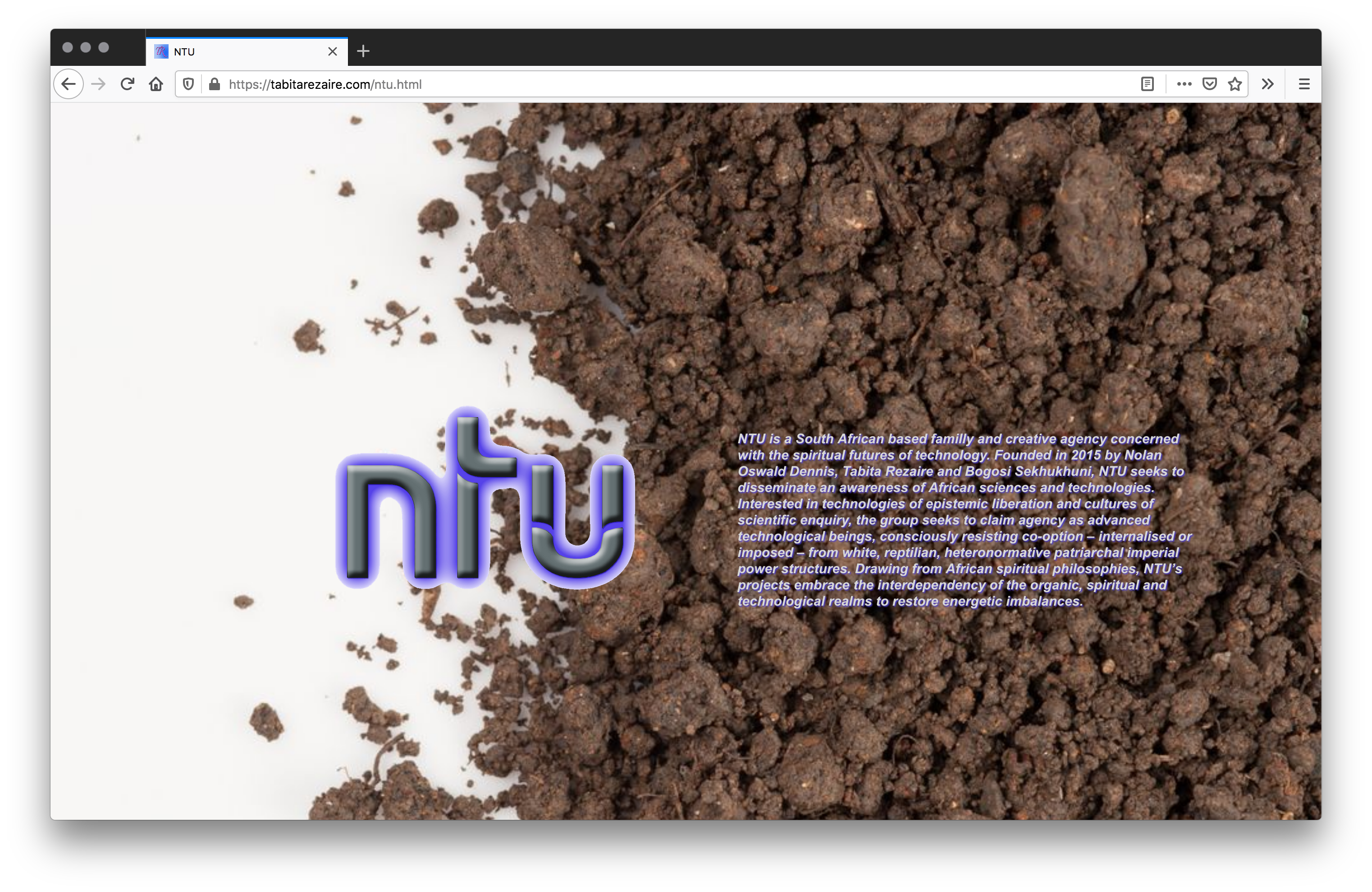
Screenshot, 2020, Firefox v76.0.1 on Mac OS 10.13.3; https://tabitarezaire.com/ntu.html

artifact from https://tabitarezaire.com/ntu.html
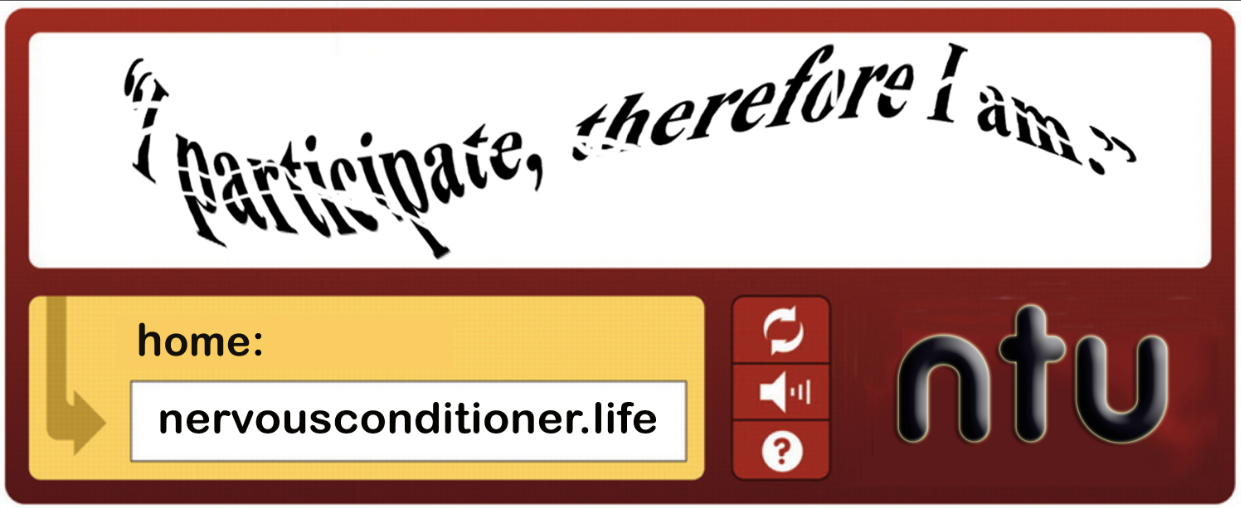
artifact from https://tabitarezaire.com/ntu.html
NTU is a South African based family and creative agency concerned with the spiritual futures of technology. Founded in 2015 by Nolan Oswald Dennis, Tabita Rezaire and Bogosi Sekhukhuni, NTU seeks to disseminate an awareness of African sciences and technologies. Interested in technologies of epistemic liberation and cultures of scientific enquiry, the group seeks to claim agency as advanced technological beings, consciously resisting co-option—internalised or imposed—from white, reptilian, heteronormative patriarchal imperial power structures. Drawing from African spiritual philosophies, NTU’s projects embrace the interdependency of the organic, spiritual and technological realms to restore energetic imbalances.
2015, Tabita Rezaire, Bogosi Sekhukhuni, and Nolan Oswald Dennis, https://tabitarezaire.com/ntu.html; referred by Melanie Hoff
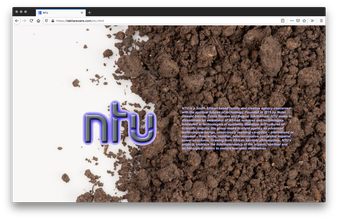
Screenshot, 2020, Firefox v76.0.1 on Mac OS 10.13.3; https://tabitarezaire.com/ntu.html

artifact from https://tabitarezaire.com/ntu.html
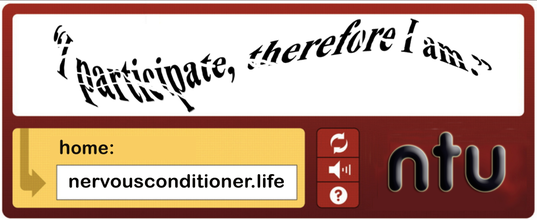
artifact from https://tabitarezaire.com/ntu.html
(503)
2015
Skawennati: Realizing the Virtual: A TimeTraveller™ Experience
David Gaertner
Like CyberPowWow before it, TimeTraveller™ enacts visual sovereignty in the way that it inscribes Indigenous politics, identities, voices, and perspectives into the present, past, and future of screen culture, a medium that has historically worked to efface Indigenous presence. In engaging the past, Timetraveller™ re-positions Indigenous presence and future and imagines new spaces to create and share stories. Hunter intervenes into the beginning of the “Sioux Uprising” providing context for the resistance and perspective on the Sioux’s strength and humor. As opposed to the flat, dehumanized images in the panorama, the Timetraveller™ VR provides a rounded, interactive engagement with history and its marginalized subjects.
2015, David Gaertner, in Skawennati: Realizing The Virtual, A TimeTraveller™ Experience (Regina, SK: Dunlop Art Gallery, 2015); excerpt p. 5
https://www.are.na/block/8127918 https://e-artexte.ca/id/eprint/27920/
Like CyberPowWow before it, TimeTraveller™ enacts visual sovereignty in the way that it inscribes Indigenous politics, identities, voices, and perspectives into the present, past, and future of screen culture, a medium that has historically worked to efface Indigenous presence. In engaging the past, Timetraveller™ re-positions Indigenous presence and future and imagines new spaces to create and share stories. Hunter intervenes into the beginning of the “Sioux Uprising” providing context for the resistance and perspective on the Sioux’s strength and humor. As opposed to the flat, dehumanized images in the panorama, the Timetraveller™ VR provides a rounded, interactive engagement with history and its marginalized subjects.
2015, David Gaertner, in Skawennati: Realizing The Virtual, A TimeTraveller™ Experience (Regina, SK: Dunlop Art Gallery, 2015); excerpt p. 5
https://www.are.na/block/8127918 https://e-artexte.ca/id/eprint/27920/
(504)
2015
There Are Certain Facts that Cannot Be Disputed
Juliana Huxtable
Artist, writer, and nightlife impresario Juliana Huxtable presents her new performance There Are Certain Facts that Cannot Be Disputed, co-commissioned by The Museum of Modern Art and Performa, which highlights her evocative use of language and written text. Realized in collaboration with an ensemble of music, sound, video, and lighting artists, three vignettes address the vexed relationship between the ephemeral nature of digital information and the drive for historical documentation in cyberspace, particularly as it relates to closed servers, bounced URLs, and Google cache. Huxtable, who approaches the Web as a vital resource for narratives that are usually discarded or placed in the margins of history, considers how the Internet has evolved from a largely text-based medium to one propelled by the power of visual symbols. She imagines these virtual spaces as twilight zones of desire, where music, dramatic oration, video, and the presence of human and digital characters coalesce into an immersive, schizophrenic experience that traverses topics as diverse as black samurai, trans-healers in South Africa, pre-colonial globalism, and human evolution.
2015, Juliana Huxtable; excerpt from “Juliana Huxtable: There Are Certain Facts that Cannot Be Disputed,” Museum of Modern Art, https://www.moma.org/calendar/performance/1564?locale=en; referred by Legacy Russell
https://www.youtube.com/watch?v=2W2hpfKrtu4

image by Juliana Huxtable
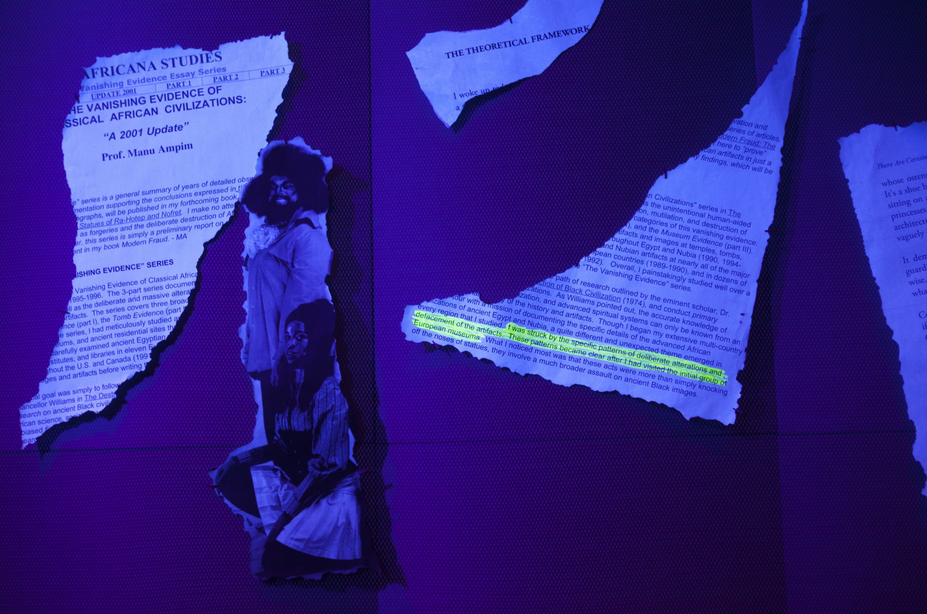
Photo by Juliete Cervantes, https://www.moma.org/calendar/performance/1564?locale=en&installation_image_index=1

Photo by Juliete Cervantes, https://www.moma.org/calendar/performance/1564?locale=en&installation_image_index=18
Artist, writer, and nightlife impresario Juliana Huxtable presents her new performance There Are Certain Facts that Cannot Be Disputed, co-commissioned by The Museum of Modern Art and Performa, which highlights her evocative use of language and written text. Realized in collaboration with an ensemble of music, sound, video, and lighting artists, three vignettes address the vexed relationship between the ephemeral nature of digital information and the drive for historical documentation in cyberspace, particularly as it relates to closed servers, bounced URLs, and Google cache. Huxtable, who approaches the Web as a vital resource for narratives that are usually discarded or placed in the margins of history, considers how the Internet has evolved from a largely text-based medium to one propelled by the power of visual symbols. She imagines these virtual spaces as twilight zones of desire, where music, dramatic oration, video, and the presence of human and digital characters coalesce into an immersive, schizophrenic experience that traverses topics as diverse as black samurai, trans-healers in South Africa, pre-colonial globalism, and human evolution.
2015, Juliana Huxtable; excerpt from “Juliana Huxtable: There Are Certain Facts that Cannot Be Disputed,” Museum of Modern Art, https://www.moma.org/calendar/performance/1564?locale=en; referred by Legacy Russell
https://www.youtube.com/watch?v=2W2hpfKrtu4

image by Juliana Huxtable
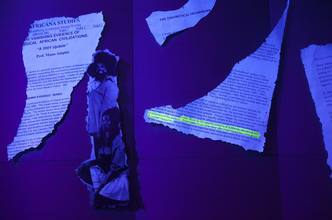
Photo by Juliete Cervantes, https://www.moma.org/calendar/performance/1564?locale=en&installation_image_index=1
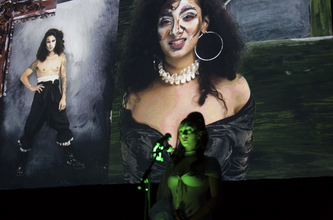
Photo by Juliete Cervantes, https://www.moma.org/calendar/performance/1564?locale=en&installation_image_index=18
(505)
2015
The Cyborg, Its Manifesto and Their Relevance Today: Some Reflections
Zoë Sofoulis
But what really makes me squirm whenever I read the opening pages of the Manifesto or am asked to speak for its author, is how closely I recognise my (then) self in the feminist, and especially ecofeminist, tendencies that Haraway was railing against. In the four-part conference presentation where Haraway introduced her cyborg to US audiences, I went first because my view was more standard and even “retro” compared to where Donna wanted to take us. For I was one of those feminists reproducing all those dualisms of “white capitalist patriarchy”; I was on about the woman-nature / man-machine connections […] With typical postgraduate self-centredness, I paid little attention to Haraway’s cyborg while working on my own ambiguous metaphors and myths of high technology and science fiction like the brain-womb, the spermatic word, the penis-breast, the cannibal eye. […] I saw Frankenstein’s monster and the cyborg as equivalent technosex fantasies, whereas Haraway placed them on different sides of her chart contrasting the logics of “white capitalist patriarchy” with those of “the informatics of domination.”
2015, Zoë Sofoulis, Platform: Journal of Media and Communication 6, no. 2 (2015): pp. 8–15; excerpt p. 8; referred by Virginia Barratt and Francesca da Rimini (x)
https://www.are.na/block/8371365
But what really makes me squirm whenever I read the opening pages of the Manifesto or am asked to speak for its author, is how closely I recognise my (then) self in the feminist, and especially ecofeminist, tendencies that Haraway was railing against. In the four-part conference presentation where Haraway introduced her cyborg to US audiences, I went first because my view was more standard and even “retro” compared to where Donna wanted to take us. For I was one of those feminists reproducing all those dualisms of “white capitalist patriarchy”; I was on about the woman-nature / man-machine connections […] With typical postgraduate self-centredness, I paid little attention to Haraway’s cyborg while working on my own ambiguous metaphors and myths of high technology and science fiction like the brain-womb, the spermatic word, the penis-breast, the cannibal eye. […] I saw Frankenstein’s monster and the cyborg as equivalent technosex fantasies, whereas Haraway placed them on different sides of her chart contrasting the logics of “white capitalist patriarchy” with those of “the informatics of domination.”
2015, Zoë Sofoulis, Platform: Journal of Media and Communication 6, no. 2 (2015): pp. 8–15; excerpt p. 8; referred by Virginia Barratt and Francesca da Rimini (x)
https://www.are.na/block/8371365
(506)
2015
GynePunks: A Hacker’s Guide to Reimagining Women’s Health
Kari Oakes
A 3D printed speculum? Do-it-yourself urinalysis? Pushing back against traditional physician-patient roles, members of a European collective—GynePunks—are taking a radical self-help approach to women's health, combining a feminist sensibility and a hacker’s DIY mentality.
The TransHack Feminist and Pechblenda groups, based in a ‘post-capitalist’ collective just north of Barcelona, bring together radical feminists with engineers and other collaborators who have technical expertise. This loose affiliation works to construct and test tools meant to be used by women who are seeking self-knowledge and empowerment through self-care.
Klau Kinki (Klau Chinche), one of the founders of the GynePunks movement, explained that the strong social change thread running through the movement has its roots in what they see as some of the exploitative practices in the early history of gynecology. In an interview, Ms. Kinki said her research led her to “dig in the shame alleys of how medicine was built.”
2015, Kari Oakes, Ob.Gyn. News, November 1, 2015, https://www.mdedge.com/obgyn/article/103599/gynecology/gynepunks-hackers-guide-reimagining-womens-health; referred by Klau Chinche (Klau Kinky)
https://www.thefreelibrary.com/GynePunks%3a+Reimagining+women%27s+health.-a0436846712
A 3D printed speculum? Do-it-yourself urinalysis? Pushing back against traditional physician-patient roles, members of a European collective—GynePunks—are taking a radical self-help approach to women's health, combining a feminist sensibility and a hacker’s DIY mentality.
The TransHack Feminist and Pechblenda groups, based in a ‘post-capitalist’ collective just north of Barcelona, bring together radical feminists with engineers and other collaborators who have technical expertise. This loose affiliation works to construct and test tools meant to be used by women who are seeking self-knowledge and empowerment through self-care.
Klau Kinki (Klau Chinche), one of the founders of the GynePunks movement, explained that the strong social change thread running through the movement has its roots in what they see as some of the exploitative practices in the early history of gynecology. In an interview, Ms. Kinki said her research led her to “dig in the shame alleys of how medicine was built.”
2015, Kari Oakes, Ob.Gyn. News, November 1, 2015, https://www.mdedge.com/obgyn/article/103599/gynecology/gynepunks-hackers-guide-reimagining-womens-health; referred by Klau Chinche (Klau Kinky)
https://www.thefreelibrary.com/GynePunks%3a+Reimagining+women%27s+health.-a0436846712
(507)
2015
Meet the GynePunks Pushing the Boundaries of DIY Gynecology
Doug Bierend
“This hacker mentality, for me, serves as a new way to understand the world around us, and gives us many tools to develop and generate our own technologies,” Paula Pin, an early GynePunk, told me over email. “We understand our body also as a technology to be hacked, from the established ideas of gender and sex, to exploring the capacity to start researching ourselves, to find our own ideas and technologies, to help us be free, autonomous and independent from the system.” […] So what is a GynePunk? “The only criteria I would apply to consider yourself GynePunk is reclaiming your body,” says Klau Chinche [Klau Kinky], another member of the movement. “GynePunk is not a formed collective, it’s a riot of bodies,” she said. “And for that riot we'll use all the help, complicity, alliances and tools we can find.”
2015, Doug Bierend, Vice, August 25, 2015, https://www.vice.com/en_us/article/qkvyjw/meet-the-gynepunks-pushing-the-boundaries-of-diy-gynecology; referred by Klau Chinche (Klau Kinky)
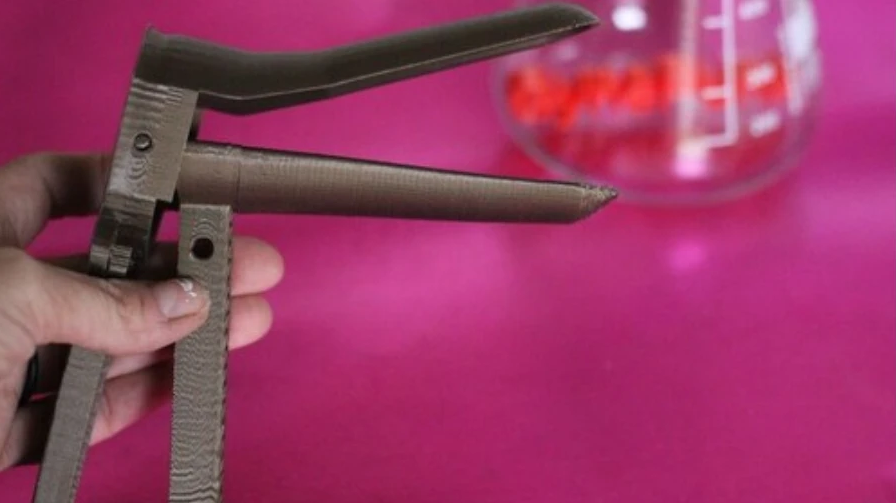
“3D-printed speculum designed by GaudiLabs. Photo: Klau/Creative Commons”, image from https://www.vice.com/en_us/article/qkvyjw/meet-the-gynepunks-pushing-the-boundaries-of-diy-gynecology

“Mounting a hacked webcam into the speculum,which can be used for cervix inspection and diagnostics using the vinegar test (see hesperian.org). Image: Paula Pin/Creative Commons”, image from https://www.vice.com/en_us/article/qkvyjw/meet-the-gynepunks-pus
“This hacker mentality, for me, serves as a new way to understand the world around us, and gives us many tools to develop and generate our own technologies,” Paula Pin, an early GynePunk, told me over email. “We understand our body also as a technology to be hacked, from the established ideas of gender and sex, to exploring the capacity to start researching ourselves, to find our own ideas and technologies, to help us be free, autonomous and independent from the system.” […] So what is a GynePunk? “The only criteria I would apply to consider yourself GynePunk is reclaiming your body,” says Klau Chinche [Klau Kinky], another member of the movement. “GynePunk is not a formed collective, it’s a riot of bodies,” she said. “And for that riot we'll use all the help, complicity, alliances and tools we can find.”
2015, Doug Bierend, Vice, August 25, 2015, https://www.vice.com/en_us/article/qkvyjw/meet-the-gynepunks-pushing-the-boundaries-of-diy-gynecology; referred by Klau Chinche (Klau Kinky)
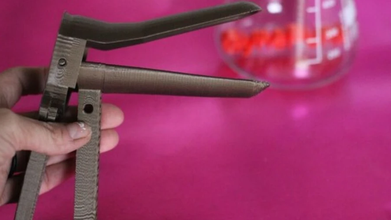
“3D-printed speculum designed by GaudiLabs. Photo: Klau/Creative Commons”, image from https://www.vice.com/en_us/article/qkvyjw/meet-the-gynepunks-pushing-the-boundaries-of-diy-gynecology

“Mounting a hacked webcam into the speculum,which can be used for cervix inspection and diagnostics using the vinegar test (see hesperian.org). Image: Paula Pin/Creative Commons”, image from https://www.vice.com/en_us/article/qkvyjw/meet-the-gynepunks-pus
(508)
2015
Sluts ‘r’ Us: Intersections of Gender, Protocol and Agency in the Digital Age
Nishant Shah
[There] is a strong warning. A woman in the public, especially one whose identity is being configured by her access to and presence on digital technologies, renders her as a potential slut. This idea of the slut that works with the reading of a “public” woman is echoed in another instance of slut-shaming. In 2009, […] the conservative right-wing religious party, Sri Ram Sene, […] declared that sluttiness is tied not to sexual practices but to the presence of women in particular spaces and company. […] Muttalik suggested that these young women, empowered by access to the Internet and cell phones, have become sluts and that they have been corrupted by technologies.
In response to this demonic invocation of sluttiness, a “consortium of loose, pub-going and forward women” was formed on Facebook, to discuss questions of gender violence and safety in these fraught times. From this consortium arose the Pink Chaddi (Hindi for underwear) Campaign, that invited people in India to form a “Love Sena” (a love army, if you will) which would collect pink underwear and send it to the headquarters of Sri Ram Sene, as a nonviolent sign of protest.
2015, Nishant Shah, First Monday 20, no. 4 (2015), https://doi.org/10.5210/fm.v20i4.5463; submitted by Maya Ganesh
https://firstmonday.org/ojs/index.php/fm/article/view/5463/4415
[There] is a strong warning. A woman in the public, especially one whose identity is being configured by her access to and presence on digital technologies, renders her as a potential slut. This idea of the slut that works with the reading of a “public” woman is echoed in another instance of slut-shaming. In 2009, […] the conservative right-wing religious party, Sri Ram Sene, […] declared that sluttiness is tied not to sexual practices but to the presence of women in particular spaces and company. […] Muttalik suggested that these young women, empowered by access to the Internet and cell phones, have become sluts and that they have been corrupted by technologies.
In response to this demonic invocation of sluttiness, a “consortium of loose, pub-going and forward women” was formed on Facebook, to discuss questions of gender violence and safety in these fraught times. From this consortium arose the Pink Chaddi (Hindi for underwear) Campaign, that invited people in India to form a “Love Sena” (a love army, if you will) which would collect pink underwear and send it to the headquarters of Sri Ram Sene, as a nonviolent sign of protest.
2015, Nishant Shah, First Monday 20, no. 4 (2015), https://doi.org/10.5210/fm.v20i4.5463; submitted by Maya Ganesh
https://firstmonday.org/ojs/index.php/fm/article/view/5463/4415
(509)
2015
Chicas Poderosas [Powerful Girls]
Mariana Santos, Belen Arce, Gia Castello
The aim of Chicas Poderosas since its creation has been to promote female leadership and gender equality in media. […] Women’s underrepresentation in the media perpetuates inequalities. To address the gender gap in media, Chicas Poderosas offers professional training to provide women in media with the concrete skills they need to take their media career to the next level, boost entrepreneurial projects, and push forward female leadership in journalism. As a community, Chicas Poderosas offers women in media the support of a network, which serves as a space to exchange knowledge and experiences, and provide access to possibilities to develop their careers. Chicas Poderosas is also changing the narrative to transform the world, by promoting spaces for the creation of collaborative journalism projects.
Chicas Poderosas has local communities based in 16 countries: Argentina, Bolivia, Brazil, Chile, Colombia, Costa Rica, Ecuador, El Salvador, España, México, Perú, Guatemala, Portugal, Spain, United States and Venezuela.
2015, Mariana Santos, Belen Arce, and Gia Castello, https://chicaspoderosas.org/; submitted by Gia Castello
The aim of Chicas Poderosas since its creation has been to promote female leadership and gender equality in media. […] Women’s underrepresentation in the media perpetuates inequalities. To address the gender gap in media, Chicas Poderosas offers professional training to provide women in media with the concrete skills they need to take their media career to the next level, boost entrepreneurial projects, and push forward female leadership in journalism. As a community, Chicas Poderosas offers women in media the support of a network, which serves as a space to exchange knowledge and experiences, and provide access to possibilities to develop their careers. Chicas Poderosas is also changing the narrative to transform the world, by promoting spaces for the creation of collaborative journalism projects.
Chicas Poderosas has local communities based in 16 countries: Argentina, Bolivia, Brazil, Chile, Colombia, Costa Rica, Ecuador, El Salvador, España, México, Perú, Guatemala, Portugal, Spain, United States and Venezuela.
2015, Mariana Santos, Belen Arce, and Gia Castello, https://chicaspoderosas.org/; submitted by Gia Castello
(510)
2015–
2021
Volumetric Regimes: Material Cultures of Quantified Presence
Femke Snelting, Jara Rocha
What is going on with 3D!? This question, both modest and enormous, triggered the collaborative research trajectory that is compiled in this book. It was provoked by our intuitive concern about the way 3D computing quite routinely seems to render racist, sexist, ableist, speciest and ageist worlds. Asking about what is up with 3D becomes especially urgent observing its application in border-patrol devices, for climate prediction modeling, in advanced biomedical imaging or throughout the gamify-all approach of overarching industries, from education to logistics. The proliferating technologies, infrastructures and techniques of 3D tracking, modeling and scanning are increasingly hard to escape. […]
What is volume, actually!? […] The concept of volume is therefore inextricably connected to particular ways of measuring dimensional worlds. [We] depart from this important shift: volume is not a given, but rather an outcome, and volumetrics is the set of techniques to fabricate such outcome.
2015, Femke Snelting and Jara Rocha, https://possiblebodies.constantvzw.org/book/index.php?title=Volumetric_Regimes; excerpt from Femke Snelting and Jara Rocha, “Introduction,” Volumetric Regimes, https://possiblebodies.constantvzw.org/book/index.php?title=Introduction; submitted by Possible Bodies (Femke Snelting and Jara Rocha)
What is going on with 3D!? This question, both modest and enormous, triggered the collaborative research trajectory that is compiled in this book. It was provoked by our intuitive concern about the way 3D computing quite routinely seems to render racist, sexist, ableist, speciest and ageist worlds. Asking about what is up with 3D becomes especially urgent observing its application in border-patrol devices, for climate prediction modeling, in advanced biomedical imaging or throughout the gamify-all approach of overarching industries, from education to logistics. The proliferating technologies, infrastructures and techniques of 3D tracking, modeling and scanning are increasingly hard to escape. […]
What is volume, actually!? […] The concept of volume is therefore inextricably connected to particular ways of measuring dimensional worlds. [We] depart from this important shift: volume is not a given, but rather an outcome, and volumetrics is the set of techniques to fabricate such outcome.
2015, Femke Snelting and Jara Rocha, https://possiblebodies.constantvzw.org/book/index.php?title=Volumetric_Regimes; excerpt from Femke Snelting and Jara Rocha, “Introduction,” Volumetric Regimes, https://possiblebodies.constantvzw.org/book/index.php?title=Introduction; submitted by Possible Bodies (Femke Snelting and Jara Rocha)
(511)
2015
CN:FM (Commoning the Networks: A feminist Methodology II)
Sophia Lycouris, Penny Travlou, Cornelia Sollfrank, Helen Varley Jamieson, Donna Metzlar, Nancy Mauro-Flude, Peter Westenberg, Reni Hofmüller
The people involved in this presentation are discussing and debating on the “commons,” a concept that has gained traction in recent debates on online culture, expanding this to cultural production in terms of feminist commons. The commonly understood or “original” definition, the term “commons” refers to land that is open for collective use. In contemporary debates the “commons” is more often used in reference to spaces and practices that are shared by groups aiming to question traditional ownership and in this particular case,—that of feminist methodologies as applied to technology—the focus is to forge an existence outside a common user/system administrator relation.
Comparisons are being made between servers which work in the traditional manner and feminist servers, which may affirmatively deconstruct services which are provided by traditional (or commercial) servers, for example, unpacking the difference between user services in terms of encryption how people sign away their freedoms. Exploring possible ways of archiving information and controlling one's data is of prime importance.
2015, Sophia Lycouris, Penny Travlou, Cornelia Sollfrank, Helen Varley Jamieson, Donna Metzlar, Nancy Mauro-Flude (sister0), Peter Westenberg, and Reni Hofmüller (presentation, Transmediale 2015, Haus der Kulturen der Welt, Berlin, Germany, January 31, 2015); excerpt from Nancy Mauro-Flude (sister0), “Commoning the Network: Feminist Methodologies,” Performing the Internet, https://networkcultures.org/performanceofcode/2015/01/27/commoning-the-network-feminist-methodologies/; submitted by Penny Travlou
https://transmediale.de/content/commoning-the-networks-a-feminist-methodology-ii
The people involved in this presentation are discussing and debating on the “commons,” a concept that has gained traction in recent debates on online culture, expanding this to cultural production in terms of feminist commons. The commonly understood or “original” definition, the term “commons” refers to land that is open for collective use. In contemporary debates the “commons” is more often used in reference to spaces and practices that are shared by groups aiming to question traditional ownership and in this particular case,—that of feminist methodologies as applied to technology—the focus is to forge an existence outside a common user/system administrator relation.
Comparisons are being made between servers which work in the traditional manner and feminist servers, which may affirmatively deconstruct services which are provided by traditional (or commercial) servers, for example, unpacking the difference between user services in terms of encryption how people sign away their freedoms. Exploring possible ways of archiving information and controlling one's data is of prime importance.
2015, Sophia Lycouris, Penny Travlou, Cornelia Sollfrank, Helen Varley Jamieson, Donna Metzlar, Nancy Mauro-Flude (sister0), Peter Westenberg, and Reni Hofmüller (presentation, Transmediale 2015, Haus der Kulturen der Welt, Berlin, Germany, January 31, 2015); excerpt from Nancy Mauro-Flude (sister0), “Commoning the Network: Feminist Methodologies,” Performing the Internet, https://networkcultures.org/performanceofcode/2015/01/27/commoning-the-network-feminist-methodologies/; submitted by Penny Travlou
https://transmediale.de/content/commoning-the-networks-a-feminist-methodology-ii
(512)
2015
Chicana/o Cyberpunk after el Movimiento
Lysa Rivera
More specifically, [Catherine S. Ramírez] asked us to reconsider how twenty-first-century technologies are a site of power and of resistance to that power by American mestizas and mestizos, primarily those who identify as Chicana or Chicano. The umbrella term for this new point of inquiry, Chicanafuturism, encompasses all Chicana/o art that situates itself at the intersection of technoscience and Chicana/o culture. This is art that, although interested in questions of form, genre, and style, is deeply attuned to the impacts of new technologies (in the past, present, and still undetermined future) on Chicana/o and Mexican indigenous cultures and communities. Similar to Afrofuturism, which Ramírez herself cites as a theoretical inspiration, Chicanafuturism is a type of cultural production—in literature, film, visual art, and music—that repurposes the “familiar memes of science fiction” to imagine, interrogate, and invent not only new political realities but also new cultural identities. Now more visible than ever, in both the academy and pop culture, today’s Afrofuturist and Chicanafuturist artists and writers embody the potent fusions made possible when science fiction sets its imaginative sights on the experiences, conditions, and political demands of people of color.
2015, Lysa Rivera, Aztlán: A Journal of Chicano Studies 40, no. 2 (Fall 2015): pp. 187–202; excerpt pp. 187–188
More specifically, [Catherine S. Ramírez] asked us to reconsider how twenty-first-century technologies are a site of power and of resistance to that power by American mestizas and mestizos, primarily those who identify as Chicana or Chicano. The umbrella term for this new point of inquiry, Chicanafuturism, encompasses all Chicana/o art that situates itself at the intersection of technoscience and Chicana/o culture. This is art that, although interested in questions of form, genre, and style, is deeply attuned to the impacts of new technologies (in the past, present, and still undetermined future) on Chicana/o and Mexican indigenous cultures and communities. Similar to Afrofuturism, which Ramírez herself cites as a theoretical inspiration, Chicanafuturism is a type of cultural production—in literature, film, visual art, and music—that repurposes the “familiar memes of science fiction” to imagine, interrogate, and invent not only new political realities but also new cultural identities. Now more visible than ever, in both the academy and pop culture, today’s Afrofuturist and Chicanafuturist artists and writers embody the potent fusions made possible when science fiction sets its imaginative sights on the experiences, conditions, and political demands of people of color.
2015, Lysa Rivera, Aztlán: A Journal of Chicano Studies 40, no. 2 (Fall 2015): pp. 187–202; excerpt pp. 187–188
(513)
2015
Cyberfeminist Ways of Getting Organized
Cornelia Sollfrank
In meinem Vortrag heute wird es um ein Projekt gehen, an dem ich maßgeblich beteiligt war, das Old Boys Network, die erste cyberfeministische Allianz. Dieses Netzwerk war von 1997 bis 2001 aktiv. Obwohl das Projekt in vielerlei Hinsicht als erfolgreich bezeichnet werden kann, kam es bei der Konferenz ‚very Cyberfeminist International’ (2001) in Hamburg zu unüberbrückbaren Kontroversen, die zum Ende der Zusammenarbeit führten. Als ich dann im Jahr 2013– 12 Jahre später—von Prof. Judith Siegmund eine Einladung für die Frauenringvorlesung an der Universität der Künste (UdK) bekam, nahm ich diese zum Anlass, mit etwas Abstand über OBN nachzudenken. Ich möchte Judith Siegmund für diese Gelegenheit danken, mich rückblickend dem Old Boys Network anzunähern, um besser zu verstehen, was eigentlich geschehen war, aber auch mit dem Wunsch, diese Erfahrungen in einem größeren Zusammenhang verorten zu können. Dieser größere Zusammenhang ist die Frage der Selbstorganisation und insbesondere die Frage der Selbstorganisation im Kunstkontext—was sicherlich andere Dynamiken mit sich bringt als Selbstorganisation in rein aktivistischen Kontexten.
My lecture today will be about a project in which I was significantly involved, the Old Boys Network, the first cyber-feminist alliance. This network was active from 1997 to 2001. Although the project can be described as successful in many ways, there were irreconcilable controversies at the conference “very Cyberfeminist International” (2001) in Hamburg, which led to the end of the collaboration. When, in 2013—2 years later—I received an invitation from Prof. Judith Siegmund for the women’s ring lecture at the University of the Arts (UdK), I took this as an opportunity to think about OBN with a little distance. I would like to thank Judith Siegmund for this opportunity to approach the Old Boys Network in retrospect in order to better understand what actually happened, but also with the wish to be able to locate these experiences in a larger context. This larger context is the question of self-organization and especially the question of self-organization in the art context—which certainly entails different dynamics than self-organization in purely activist contexts.
2015, Cornelia Sollfrank (lecture, Feminist Stories—Strategien der Wiederaneignung, Vierte Welt, Berlin, Germany, November 24, 2015); transcript from artwarez, http://artwarez.org/195.0.html; referred by Cornelia Sollfrank
Editor’s Note: An updated version of this text, “The Art of Getting Organized: A Different Approach to Old Boys Network,” (x) was commissioned and first published in: Computer Grrrls, eds. Inke Arns and Marie Lechner (Dortmund: Kettler, 2021). —MS
In meinem Vortrag heute wird es um ein Projekt gehen, an dem ich maßgeblich beteiligt war, das Old Boys Network, die erste cyberfeministische Allianz. Dieses Netzwerk war von 1997 bis 2001 aktiv. Obwohl das Projekt in vielerlei Hinsicht als erfolgreich bezeichnet werden kann, kam es bei der Konferenz ‚very Cyberfeminist International’ (2001) in Hamburg zu unüberbrückbaren Kontroversen, die zum Ende der Zusammenarbeit führten. Als ich dann im Jahr 2013– 12 Jahre später—von Prof. Judith Siegmund eine Einladung für die Frauenringvorlesung an der Universität der Künste (UdK) bekam, nahm ich diese zum Anlass, mit etwas Abstand über OBN nachzudenken. Ich möchte Judith Siegmund für diese Gelegenheit danken, mich rückblickend dem Old Boys Network anzunähern, um besser zu verstehen, was eigentlich geschehen war, aber auch mit dem Wunsch, diese Erfahrungen in einem größeren Zusammenhang verorten zu können. Dieser größere Zusammenhang ist die Frage der Selbstorganisation und insbesondere die Frage der Selbstorganisation im Kunstkontext—was sicherlich andere Dynamiken mit sich bringt als Selbstorganisation in rein aktivistischen Kontexten.
My lecture today will be about a project in which I was significantly involved, the Old Boys Network, the first cyber-feminist alliance. This network was active from 1997 to 2001. Although the project can be described as successful in many ways, there were irreconcilable controversies at the conference “very Cyberfeminist International” (2001) in Hamburg, which led to the end of the collaboration. When, in 2013—2 years later—I received an invitation from Prof. Judith Siegmund for the women’s ring lecture at the University of the Arts (UdK), I took this as an opportunity to think about OBN with a little distance. I would like to thank Judith Siegmund for this opportunity to approach the Old Boys Network in retrospect in order to better understand what actually happened, but also with the wish to be able to locate these experiences in a larger context. This larger context is the question of self-organization and especially the question of self-organization in the art context—which certainly entails different dynamics than self-organization in purely activist contexts.
2015, Cornelia Sollfrank (lecture, Feminist Stories—Strategien der Wiederaneignung, Vierte Welt, Berlin, Germany, November 24, 2015); transcript from artwarez, http://artwarez.org/195.0.html; referred by Cornelia Sollfrank
Editor’s Note: An updated version of this text, “The Art of Getting Organized: A Different Approach to Old Boys Network,” (x) was commissioned and first published in: Computer Grrrls, eds. Inke Arns and Marie Lechner (Dortmund: Kettler, 2021). —MS
(514)
2015
Dark Matters: On the Surveillance of Blackness
Simone Browne
In Dark Matters Simone Browne locates the conditions of blackness as a key site through which surveillance is practiced, narrated, and resisted. She shows how contemporary surveillance technologies and practices are informed by the long history of racial formation and by the methods of policing black life under slavery, such as branding, runaway slave notices, and lantern laws. Placing surveillance studies into conversation with the archive of transatlantic slavery and its afterlife, Browne draws from black feminist theory, sociology, and cultural studies to analyze texts as diverse as the methods of surveilling blackness she discusses: from the design of the eighteenth-century slave ship Brooks, Jeremy Bentham's Panopticon, and The Book of Negroes, to contemporary art, literature, biometrics, and post-9/11 airport security practices. Surveillance, Browne asserts, is both a discursive and material practice that reifies boundaries, borders, and bodies around racial lines, so much so that the surveillance of blackness has long been, and continues to be, a social and political norm.
2015, Simone Browne (Durham, NC: Duke University Press, 2015); excerpt from Duke University Press
In Dark Matters Simone Browne locates the conditions of blackness as a key site through which surveillance is practiced, narrated, and resisted. She shows how contemporary surveillance technologies and practices are informed by the long history of racial formation and by the methods of policing black life under slavery, such as branding, runaway slave notices, and lantern laws. Placing surveillance studies into conversation with the archive of transatlantic slavery and its afterlife, Browne draws from black feminist theory, sociology, and cultural studies to analyze texts as diverse as the methods of surveilling blackness she discusses: from the design of the eighteenth-century slave ship Brooks, Jeremy Bentham's Panopticon, and The Book of Negroes, to contemporary art, literature, biometrics, and post-9/11 airport security practices. Surveillance, Browne asserts, is both a discursive and material practice that reifies boundaries, borders, and bodies around racial lines, so much so that the surveillance of blackness has long been, and continues to be, a social and political norm.
2015, Simone Browne (Durham, NC: Duke University Press, 2015); excerpt from Duke University Press
(515)
2015
Hundred Degrees Can Not Search Your Thirty Degree Smile
Miao Ying
In Chinese, "bai" means hundred; “du” means degrees. This double entendre, “hundred degrees” is the Chinese search engine Baidu, which became the main search engine back in 2010 when Google left China. Maybe years later, the younger Chinese generation might think Google copied Baidu. This poem I found online; it reads, “The thirty degrees of your smile can not be found on Baidu.” I pictured this poem as depicting a heart-broken guy looking for his former girlfriend’s picture on Instagram. Her perfect, charming, unique smile cannot be found because Instagram is blocked in China. Therefore, he had to search for her smile on Baidu, aka: “Hundred degrees,” and found nothing. […] Blocking off parts of the internet is an unpleasant and manipulative action by the authorities which already has a long history in China. […] Inside those boundaries, there are netizens who are hugely responsive and alert—perhaps much more-so than those who can browse freely.
2015, Miao Ying; excerpt from Miao Ying, interview by Iona Whittaker, “Artist Profile: Miao Ying,” Rhizome, July 8, 2015, https://rhizome.org/editorial/2015/jul/08/artist-profile-miao-ying/
In Chinese, "bai" means hundred; “du” means degrees. This double entendre, “hundred degrees” is the Chinese search engine Baidu, which became the main search engine back in 2010 when Google left China. Maybe years later, the younger Chinese generation might think Google copied Baidu. This poem I found online; it reads, “The thirty degrees of your smile can not be found on Baidu.” I pictured this poem as depicting a heart-broken guy looking for his former girlfriend’s picture on Instagram. Her perfect, charming, unique smile cannot be found because Instagram is blocked in China. Therefore, he had to search for her smile on Baidu, aka: “Hundred degrees,” and found nothing. […] Blocking off parts of the internet is an unpleasant and manipulative action by the authorities which already has a long history in China. […] Inside those boundaries, there are netizens who are hugely responsive and alert—perhaps much more-so than those who can browse freely.
2015, Miao Ying; excerpt from Miao Ying, interview by Iona Whittaker, “Artist Profile: Miao Ying,” Rhizome, July 8, 2015, https://rhizome.org/editorial/2015/jul/08/artist-profile-miao-ying/
(516)
2015
Just For The Record
Myriam Arseneault-Goulet, Loraine Furter, Sarah Magnan, Mia Melvær
Just For The Record is a project addressing how gender is represented in new media and writing/publishing tools like Wikipedia, and what influence this has on the way history is recorded.
With the importance that such platforms as Wikipedia have gained in our society, and the new writing and publishing tools they propose, it is becoming clear that history is being written down once again. Therefore it is of great concern when studies reveal that only 8,5 to 22.7% of Wikipedia’s contributors are women. This problem was identified by the community itself as the Gender Gap. [...]
Each event will start with a lecture given by a guest speaker or organization about a topic related to the gender gap. This presentation will be used as a starting point to question the topic’s representation on Wikipedia and to identify articles that need to be created or modified. Participants will then be given a crash course in Wikipedia editing, followed by an editing session. An artistic intervention relevant to the topic will open up to new perspectives and close the day. The session will last one day and will be held in a different location each time, as a way to highlight the rich network of organizations already active in gender, feminism and media issues in and around Brussels.
2015, Myriam Arseneault-Goulet, Loraine Furter, Sarah Magnan and Mia Melvær, issue on cyberfeminism in 2017, http://justfortherecord.space/cyber-2017; submitted by Loraine Furter
Just For The Record is a project addressing how gender is represented in new media and writing/publishing tools like Wikipedia, and what influence this has on the way history is recorded.
With the importance that such platforms as Wikipedia have gained in our society, and the new writing and publishing tools they propose, it is becoming clear that history is being written down once again. Therefore it is of great concern when studies reveal that only 8,5 to 22.7% of Wikipedia’s contributors are women. This problem was identified by the community itself as the Gender Gap. [...]
Each event will start with a lecture given by a guest speaker or organization about a topic related to the gender gap. This presentation will be used as a starting point to question the topic’s representation on Wikipedia and to identify articles that need to be created or modified. Participants will then be given a crash course in Wikipedia editing, followed by an editing session. An artistic intervention relevant to the topic will open up to new perspectives and close the day. The session will last one day and will be held in a different location each time, as a way to highlight the rich network of organizations already active in gender, feminism and media issues in and around Brussels.
2015, Myriam Arseneault-Goulet, Loraine Furter, Sarah Magnan and Mia Melvær, issue on cyberfeminism in 2017, http://justfortherecord.space/cyber-2017; submitted by Loraine Furter
(517)
2016
QueerOS: A User’s Manual
Fiona Barnett, Zach Blas, Micha Cárdenas, Jacob Gaboury, Jessica Marie Johnson, Margaret Rhee
Our hope is not to present a unified theory of what a queer operating system should be. Our goal is to continue to advance a theory of queerness as technological, operative, and systemic, derived from individual interests, mutual concern, and discussions that have emerged from collective presentations, virtual discussions, and queer dreams. It is to engage with the challenge of understanding queerness today as operating on and through digital media and the digital humanities. Our intervention therefore seeks to address what we perceive as a lack of queer, trans, and racial analysis in the digital humanities, as well as the challenges of imbricating queer/trans/racialized lives and building digital/technical architectures that do not replicate existing systems of oppression. As such, this is a speculative proposition for a technical project that does not yet exist and may never come to exist, a project that does not yet function and may never function. It is a response to the requirement that the digital humanities create working technologies. In lieu of tools, we offer up theoretical vaporware, speculative potentialware, ephemeral praxis.
2016, Fiona Barnett, Zach Blas, Micha Cárdenas, Jacob Gaboury, Jessica Marie Johnson, and Margaret Rhee, in Debates in the Digital Humanities 2016, eds. Matthew K. Gold and Lauren F. Klein (Minneapolis, MN: University of Minnesota Press, 2016), http://dhdebates.gc.cuny.edu/debates/text/56
Our hope is not to present a unified theory of what a queer operating system should be. Our goal is to continue to advance a theory of queerness as technological, operative, and systemic, derived from individual interests, mutual concern, and discussions that have emerged from collective presentations, virtual discussions, and queer dreams. It is to engage with the challenge of understanding queerness today as operating on and through digital media and the digital humanities. Our intervention therefore seeks to address what we perceive as a lack of queer, trans, and racial analysis in the digital humanities, as well as the challenges of imbricating queer/trans/racialized lives and building digital/technical architectures that do not replicate existing systems of oppression. As such, this is a speculative proposition for a technical project that does not yet exist and may never come to exist, a project that does not yet function and may never function. It is a response to the requirement that the digital humanities create working technologies. In lieu of tools, we offer up theoretical vaporware, speculative potentialware, ephemeral praxis.
2016, Fiona Barnett, Zach Blas, Micha Cárdenas, Jacob Gaboury, Jessica Marie Johnson, and Margaret Rhee, in Debates in the Digital Humanities 2016, eds. Matthew K. Gold and Lauren F. Klein (Minneapolis, MN: University of Minnesota Press, 2016), http://dhdebates.gc.cuny.edu/debates/text/56
(518)
2016
Particular Universals
Francis Tseng, Helen Hester
Indeed, xenofeminism precisely aims for an intersectional universal—what we describe in the manifesto as a “politics assembled from the needs of every human, cutting across race, ability, economic standing, and geographical position.” This is in direct opposition to the bloated particularity that has conventionally been passed off as the universal and which has largely cornered the market on popular understandings of the generic since the Enlightenment. The xenofeminist challenge is not simply to reject universality, which we view as having considerable political utility, but to contest for and to re-engineer the universal. This is why we seek to position the universal as a kind of “mutable architecture that, like open source software, remains available for perpetual modification and enhancement.” Far from transcending the concerns of the social, the universal demands to be understood as the perpetually unfinished business of the political. But I can appreciate that we have a lot more to do in order to demonstrate this to some of our unconvinced allies.
2016, Helen Hester, interview by Francis Tseng, New Inquiry, December 22, 2016, www.thenewinquiry.com/particular-universals
Indeed, xenofeminism precisely aims for an intersectional universal—what we describe in the manifesto as a “politics assembled from the needs of every human, cutting across race, ability, economic standing, and geographical position.” This is in direct opposition to the bloated particularity that has conventionally been passed off as the universal and which has largely cornered the market on popular understandings of the generic since the Enlightenment. The xenofeminist challenge is not simply to reject universality, which we view as having considerable political utility, but to contest for and to re-engineer the universal. This is why we seek to position the universal as a kind of “mutable architecture that, like open source software, remains available for perpetual modification and enhancement.” Far from transcending the concerns of the social, the universal demands to be understood as the perpetually unfinished business of the political. But I can appreciate that we have a lot more to do in order to demonstrate this to some of our unconvinced allies.
2016, Helen Hester, interview by Francis Tseng, New Inquiry, December 22, 2016, www.thenewinquiry.com/particular-universals
(519)
2016
Laboria Cuboniks in Conversation
Laboria Cuboniks, Armen Avanessian, Suhail Malik
Armen Avanessian and Suhail Malik: What distinctly futural pressures on contemporaneity does XF make? Could you amplify your advocacy of gender abolitionism in this regard? […]
Lucca Fraser [of Laboria Cuboniks]: All strategy is “futural.” There’s no way for it not to be. If there’s anything that makes us particularly “futuristic,” I suppose it comes down to two things: (1) we don’t think that any age of history offers a model of feminism that we should uncritically imitate (and this includes the present—we don’t think the most urgent issue is to conserve what now exists), and (2) scale. Without losing focus on the world at our disposal, we think that feminist, anticolonial, and anticlass politics needs to think in terms of decades and centuries, rather than just in terms of relatively immediate gains. What kind of world, or worlds, do we want to see exist in 2116, for example? In 2226? What can we do over the next several decades to set those worlds in motion? If politics today tends to be anti-futuristic, it’s because it has such a dangerously strong bias in its time preference—it places the present, and the immediate future, above all else. Politics today is very smash-and-grab in nature, and this can be said of both the reigning parliamentary democracies (whose horizons are rarely more than an electoral term or two away) and protest politics (whose horizons rarely stretch beyond the event of the protest itself).
2016, Laboria Cuboniks, interview by Armen Avanessian and Suhail Malik, DIS Magazine, July 23, 2016, http://dismagazine.com/blog/81953/laboria-cuboniks-in-conversation/
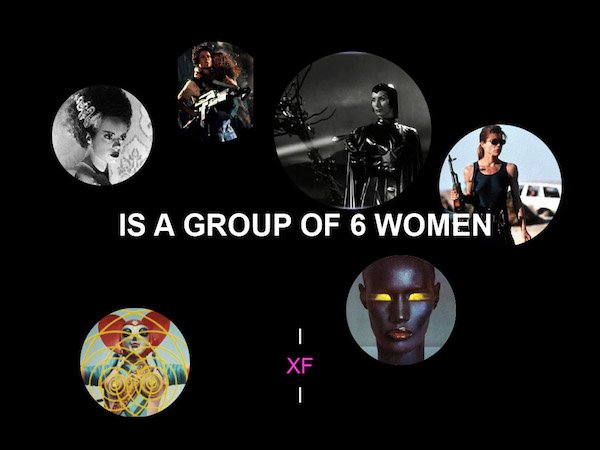
Video still by Diann Bauer
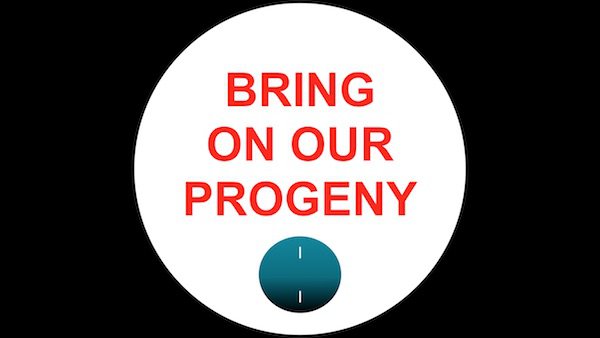
Video still by Diann Bauer

Video still by Diann Bauer
Armen Avanessian and Suhail Malik: What distinctly futural pressures on contemporaneity does XF make? Could you amplify your advocacy of gender abolitionism in this regard? […]
Lucca Fraser [of Laboria Cuboniks]: All strategy is “futural.” There’s no way for it not to be. If there’s anything that makes us particularly “futuristic,” I suppose it comes down to two things: (1) we don’t think that any age of history offers a model of feminism that we should uncritically imitate (and this includes the present—we don’t think the most urgent issue is to conserve what now exists), and (2) scale. Without losing focus on the world at our disposal, we think that feminist, anticolonial, and anticlass politics needs to think in terms of decades and centuries, rather than just in terms of relatively immediate gains. What kind of world, or worlds, do we want to see exist in 2116, for example? In 2226? What can we do over the next several decades to set those worlds in motion? If politics today tends to be anti-futuristic, it’s because it has such a dangerously strong bias in its time preference—it places the present, and the immediate future, above all else. Politics today is very smash-and-grab in nature, and this can be said of both the reigning parliamentary democracies (whose horizons are rarely more than an electoral term or two away) and protest politics (whose horizons rarely stretch beyond the event of the protest itself).
2016, Laboria Cuboniks, interview by Armen Avanessian and Suhail Malik, DIS Magazine, July 23, 2016, http://dismagazine.com/blog/81953/laboria-cuboniks-in-conversation/
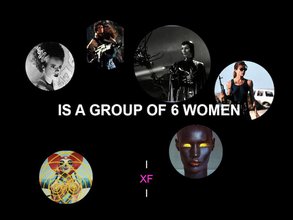
Video still by Diann Bauer

Video still by Diann Bauer

Video still by Diann Bauer
(520)
2016
Teknolust
Lynn Hershman Leeson
Teknolust is a contemporary Frankenstein story, with gender reversals. While Mary Shelley was the first to write about how Artificial Intelligence animated through electricity as a monster, Teknolust, focuses on bio-technology, virtual life and spiritual machines which can become our friends, guides or even lovers. Imagine a world in which there is a blurring between the soul and the chip, a world in which artificially implanted DNA is genetically bred to create enlightened and self-replicating intelligent machine which, perhaps, use a human body as a vehicle for mobility. According to several experts, this premise is not science fiction but actually plausible in the near future. The relationship of humans to technology and the unknown threat of biogenetics is one of the more vital areas of contemporary life. The provocations of a compelling vision for a future in which evolution is continually reformatting our dreams and digital enhancements, one by one, add solidity to this era’s newly formed cyborgian spine were appealing enough to create this film, which, though a comedy, hopefully sets forth some of the issues of our era.
2016, Lynn Hershman Leeson; excerpt from Lynn Hershman Leeson, “Teknolust Director’s Statement,” https://www.lynnhershman.com/wp-content/uploads/2016/06/Teknolust-Directors-Statement.pdf
Teknolust is a contemporary Frankenstein story, with gender reversals. While Mary Shelley was the first to write about how Artificial Intelligence animated through electricity as a monster, Teknolust, focuses on bio-technology, virtual life and spiritual machines which can become our friends, guides or even lovers. Imagine a world in which there is a blurring between the soul and the chip, a world in which artificially implanted DNA is genetically bred to create enlightened and self-replicating intelligent machine which, perhaps, use a human body as a vehicle for mobility. According to several experts, this premise is not science fiction but actually plausible in the near future. The relationship of humans to technology and the unknown threat of biogenetics is one of the more vital areas of contemporary life. The provocations of a compelling vision for a future in which evolution is continually reformatting our dreams and digital enhancements, one by one, add solidity to this era’s newly formed cyborgian spine were appealing enough to create this film, which, though a comedy, hopefully sets forth some of the issues of our era.
2016, Lynn Hershman Leeson; excerpt from Lynn Hershman Leeson, “Teknolust Director’s Statement,” https://www.lynnhershman.com/wp-content/uploads/2016/06/Teknolust-Directors-Statement.pdf
(521)
2016
ESTROFEM LAB
Mary Maggic
[“estrogen hack lab” or ESTROFEM LAB is] a set of tools, protocols, and wetware for low-cost, accessible, participatory estrogen hacking + workshopology, necessitated by its genesis project, Open Source Estrogen, the biopolitics of estrogen colonization and microperformativity. Regarded sometimes as hobo science, freak science, and public amateurism, the Estrofem Lab and its workshopologies aim to detect and extract estrogen from “sources with meaning,” providing the contextual framework for why we hack estrogen, and why we perform science as citizens and (hack)activists. This ongoing artistic investigation has led to creation of yeast estrogen sensors (YES-HER yeast) containing human estrogen receptor for detection, vacuum pump solid phase extraction (SPE) using cigarette filters and smashed silica gel, and reverse phase column chromatography using broken glass bottles and methanol. I hope this website serves as a resource for others interested in the ongoing hormonal mutations and reproductive havocs that saturate our shared environments !
2016, Mary Maggic, http://www.maggic.ooo/Estrofem-Lab-2016

image from http://www.maggic.ooo/Estrofem-Lab-2016

image from http://www.maggic.ooo/Estrofem-Lab-2016

image from http://www.maggic.ooo/Estrofem-Lab-2016
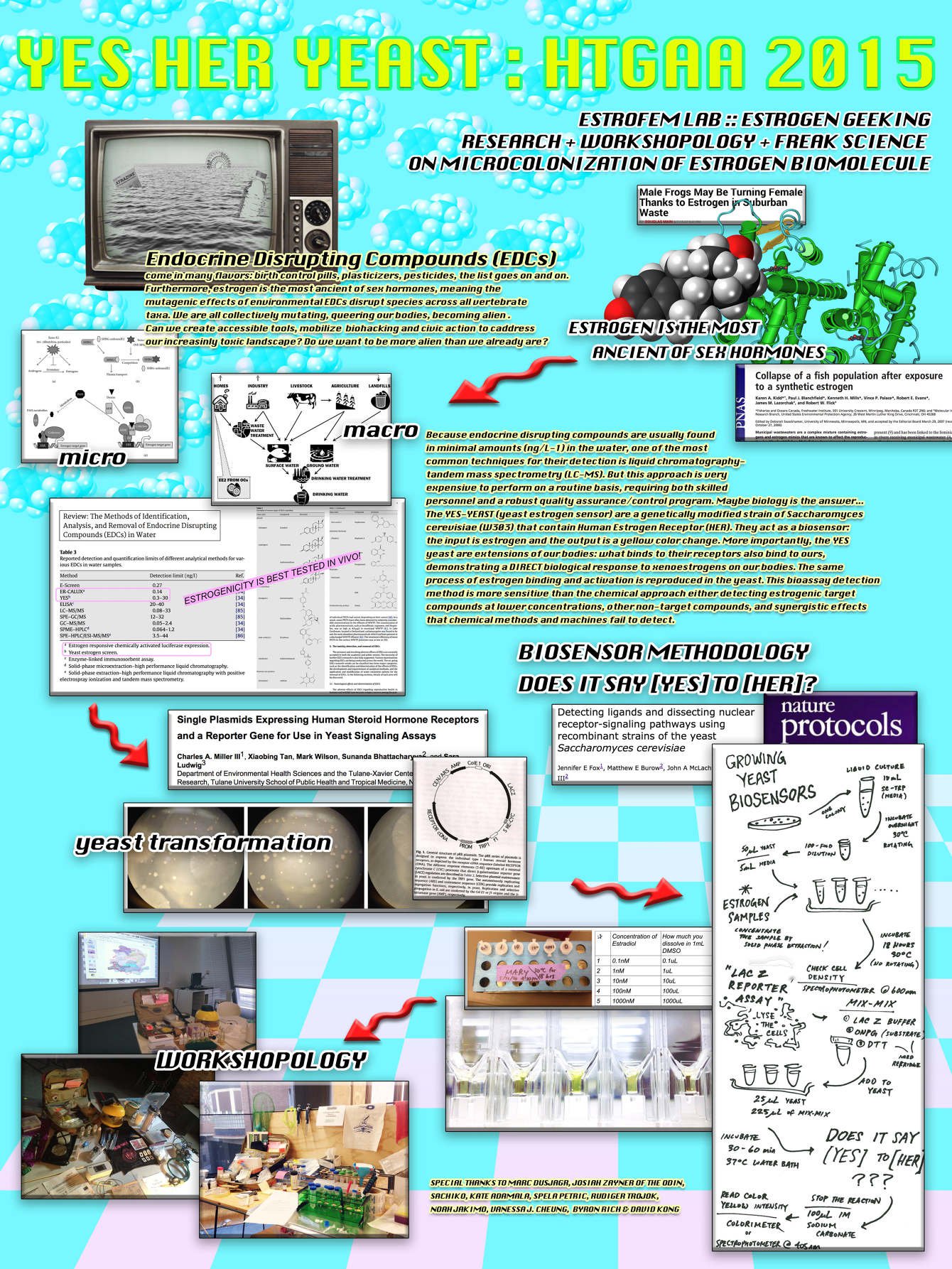
“YES-HER YEAST BIOSENSORS (DETECTION)”, image from http://www.maggic.ooo/Estrofem-Lab-2016
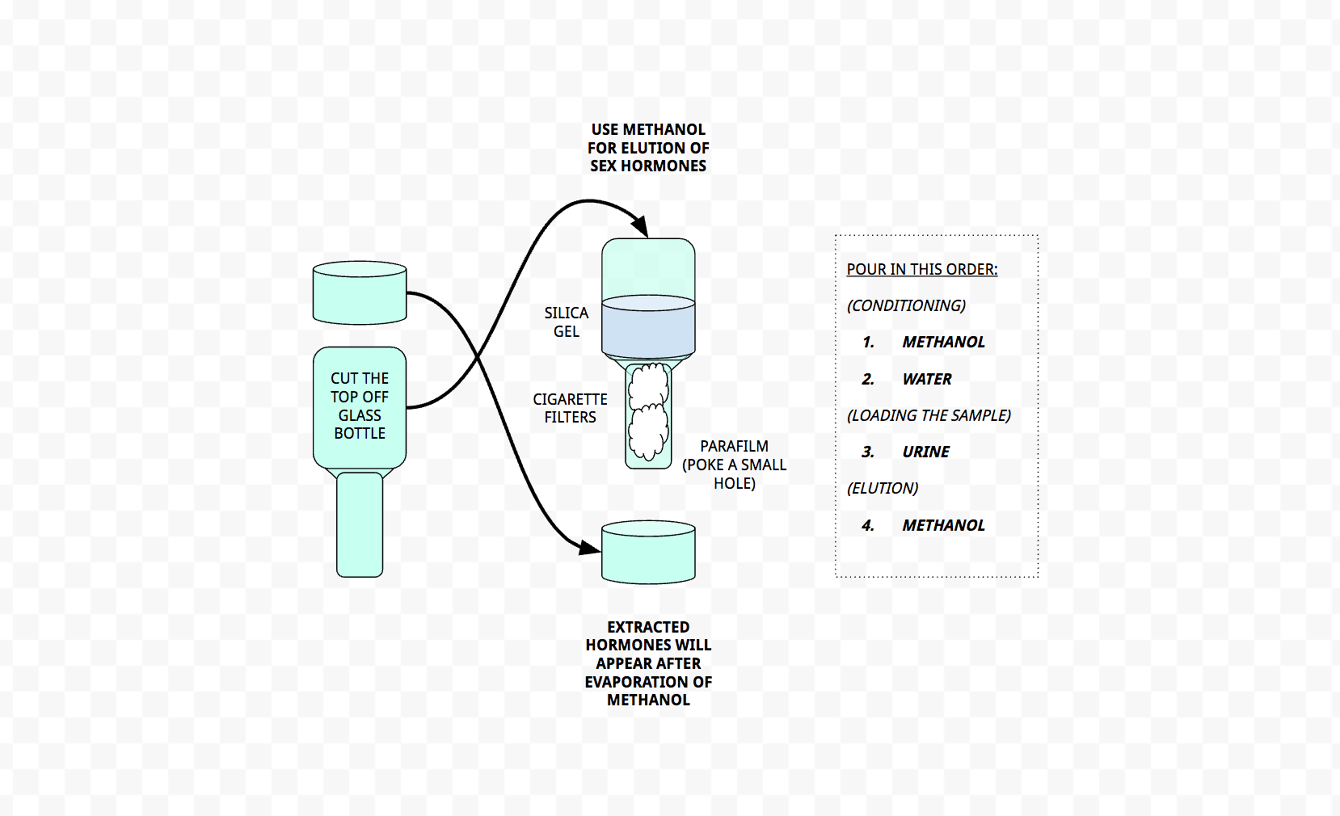
“DIY COLUMN CHROMATOGRAPHY URINE EXTRACTION ACTION”, image from http://www.maggic.ooo/Estrofem-Lab-2016

“DIY VACUUM PUMP SOLID PHASE EXTRACTION”, image from http://www.maggic.ooo/Estrofem-Lab-2016

“XENO-WATERS // RIVER GYNECOLOGY // TOXIC ECO-BODIES”, image from http://www.maggic.ooo/Estrofem-Lab-2016
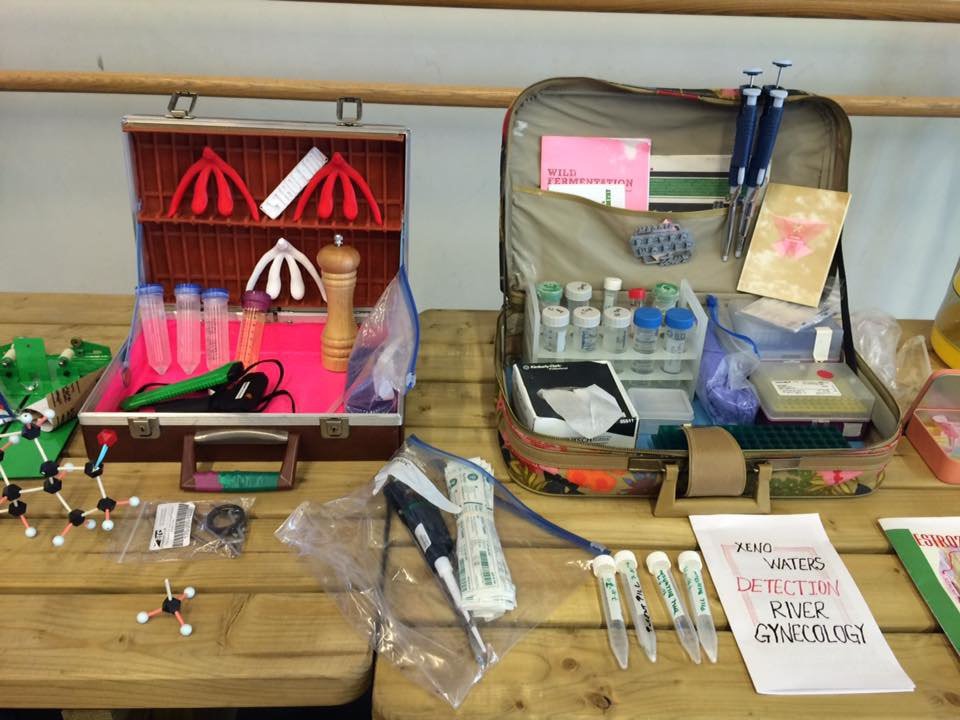
“DIY Human Enhancement Clinic #2: Your Hormones – Extract and Deploy”, Workshop in the Netherlands, image from http://www.maggic.ooo/Estrofem-Lab-2016
[“estrogen hack lab” or ESTROFEM LAB is] a set of tools, protocols, and wetware for low-cost, accessible, participatory estrogen hacking + workshopology, necessitated by its genesis project, Open Source Estrogen, the biopolitics of estrogen colonization and microperformativity. Regarded sometimes as hobo science, freak science, and public amateurism, the Estrofem Lab and its workshopologies aim to detect and extract estrogen from “sources with meaning,” providing the contextual framework for why we hack estrogen, and why we perform science as citizens and (hack)activists. This ongoing artistic investigation has led to creation of yeast estrogen sensors (YES-HER yeast) containing human estrogen receptor for detection, vacuum pump solid phase extraction (SPE) using cigarette filters and smashed silica gel, and reverse phase column chromatography using broken glass bottles and methanol. I hope this website serves as a resource for others interested in the ongoing hormonal mutations and reproductive havocs that saturate our shared environments !
2016, Mary Maggic, http://www.maggic.ooo/Estrofem-Lab-2016

image from http://www.maggic.ooo/Estrofem-Lab-2016

image from http://www.maggic.ooo/Estrofem-Lab-2016
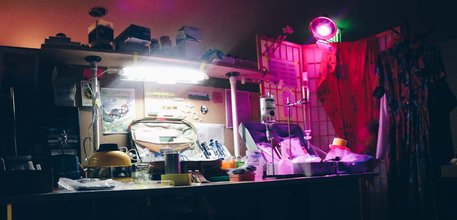
image from http://www.maggic.ooo/Estrofem-Lab-2016
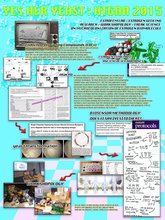
“YES-HER YEAST BIOSENSORS (DETECTION)”, image from http://www.maggic.ooo/Estrofem-Lab-2016
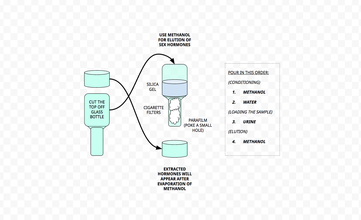
“DIY COLUMN CHROMATOGRAPHY URINE EXTRACTION ACTION”, image from http://www.maggic.ooo/Estrofem-Lab-2016

“DIY VACUUM PUMP SOLID PHASE EXTRACTION”, image from http://www.maggic.ooo/Estrofem-Lab-2016

“XENO-WATERS // RIVER GYNECOLOGY // TOXIC ECO-BODIES”, image from http://www.maggic.ooo/Estrofem-Lab-2016
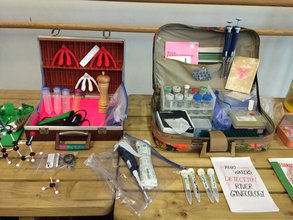
“DIY Human Enhancement Clinic #2: Your Hormones – Extract and Deploy”, Workshop in the Netherlands, image from http://www.maggic.ooo/Estrofem-Lab-2016
(522)
2016
Intersectional Internet: Race, Sex, Class, and Culture Online
Safiya Umoja Noble, Brendesha Tynes
We, too, have been writing about how race and gender are implicated in intersectional ways on the Web. [Safiya] Noble researched the ways that the commercial search engine, Google, profits from hypersexualized misrepresentations of Black women and girls and cautions against the outsourcing of public information needs to private corporations. [Brendesha M.] Tynes has published extensively about the racial landscape adolescents navigate online […] Together, our findings are consistent with the way [Andre] Brock characterizes how technology design and practice are instantiated with racial ideologies: “I content that the Western Internet, as a social structure, represents and maintains White, masculine, bourgeois, heterosexual and Christian culture through its content. […] English-speaking Internet users, content providers, policy makers, and designers bring their racial frames to their Internet experiences […] These practices neatly recreate social dynamics online that mirror patterns of racial interaction by marginalizing women and people of color.”
2016, Safiya Umoja Noble and Brendesha M. Tynes, eds. (New York: Peter Lang, 2016); excerpt from Safiya Umoja Noble and Brendesha M. Tynes, introduction to Umoja Noble and Tynes, The Intersectional Internet, pp. 5–6
Editor’s Note: In the introduction, Noble and Tynes attribute the idea for this book to André Brock and their essay, “Beyond the Pale: The Blackbird Web Browser’s Critical Reception” New Media and Society 13, no. 7 (2011): pp. 1085–1103, which asked contributors to interrogate the internet through the lens of intersectionality: “Intersectionality in this collection may highlight how individuals experience intersecting oppressions in a given socio/historical/political context […]” —MS
https://intersectionalinternet.com/
We, too, have been writing about how race and gender are implicated in intersectional ways on the Web. [Safiya] Noble researched the ways that the commercial search engine, Google, profits from hypersexualized misrepresentations of Black women and girls and cautions against the outsourcing of public information needs to private corporations. [Brendesha M.] Tynes has published extensively about the racial landscape adolescents navigate online […] Together, our findings are consistent with the way [Andre] Brock characterizes how technology design and practice are instantiated with racial ideologies: “I content that the Western Internet, as a social structure, represents and maintains White, masculine, bourgeois, heterosexual and Christian culture through its content. […] English-speaking Internet users, content providers, policy makers, and designers bring their racial frames to their Internet experiences […] These practices neatly recreate social dynamics online that mirror patterns of racial interaction by marginalizing women and people of color.”
2016, Safiya Umoja Noble and Brendesha M. Tynes, eds. (New York: Peter Lang, 2016); excerpt from Safiya Umoja Noble and Brendesha M. Tynes, introduction to Umoja Noble and Tynes, The Intersectional Internet, pp. 5–6
Editor’s Note: In the introduction, Noble and Tynes attribute the idea for this book to André Brock and their essay, “Beyond the Pale: The Blackbird Web Browser’s Critical Reception” New Media and Society 13, no. 7 (2011): pp. 1085–1103, which asked contributors to interrogate the internet through the lens of intersectionality: “Intersectionality in this collection may highlight how individuals experience intersecting oppressions in a given socio/historical/political context […]” —MS
https://intersectionalinternet.com/
(523)
2016
Sandy Speaks: a Chatbot that Talks Prison Statistics & the Failure of Surveillance
American Artist
The project is named after Sandra’s eponymous video series Sandy Speaks, which was a politically-engaged series over social media in the months prior to her arrest. In Sandy Speaks Sandra expressed her views on police brutality, the Black Lives Matter campaign, and offered insight on how Black people of color should feel towards antagonism created by law enforcement. In the series she repeatedly acknowledges that she has a calling to educate the next generation on racial politics and that the relationship between police and Black people of color is something that can be healed through the education of youth. […] Questions that might be asked of Sandy Speaks include Who are you?, What can you tell me about prison?, Why do people get arrested?, […] Can I film police?, What is the racial demographic breakdown of cops?, What is Black Lives Matter?, […] What can you tell me about surveillance?, […] Why was Sandra arrested?
2016, American Artist, Paper, September 20, 2016, https://www.papermag.com/sandy-speaks-a-chatbot-that-talks-prison-statistics--the-failure-of-su-2010424770.html
https://vimeo.com/184268072 https://www.are.na/block/7907541

Video Still 00:52, https://vimeo.com/184268072
The project is named after Sandra’s eponymous video series Sandy Speaks, which was a politically-engaged series over social media in the months prior to her arrest. In Sandy Speaks Sandra expressed her views on police brutality, the Black Lives Matter campaign, and offered insight on how Black people of color should feel towards antagonism created by law enforcement. In the series she repeatedly acknowledges that she has a calling to educate the next generation on racial politics and that the relationship between police and Black people of color is something that can be healed through the education of youth. […] Questions that might be asked of Sandy Speaks include Who are you?, What can you tell me about prison?, Why do people get arrested?, […] Can I film police?, What is the racial demographic breakdown of cops?, What is Black Lives Matter?, […] What can you tell me about surveillance?, […] Why was Sandra arrested?
2016, American Artist, Paper, September 20, 2016, https://www.papermag.com/sandy-speaks-a-chatbot-that-talks-prison-statistics--the-failure-of-su-2010424770.html
https://vimeo.com/184268072 https://www.are.na/block/7907541
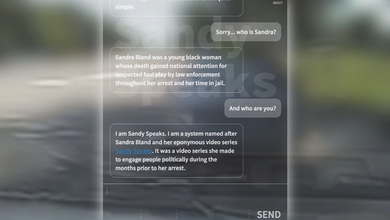
Video Still 00:52, https://vimeo.com/184268072
(524)
2016
Data: The New Four-Letter Word for Feminism
Anita Gurumurthy, Nandini Chami
This new brand of techno-solutionism is the latest in a series of acts of “epistemic violence” that the Westphalian development model has unleashed. The bureaucratic projects of development and empowerment seek a brave, new, technical civilisation in which human beings are split into two classes: “social engineers” (read privileged white men) who define problems and the “engineered” who are only acted upon (read subaltern women). The ideology of data, driving policy makers towards this utopia, requires that algorithms determine (and even replace) deliberation and discussion. Citizens are serviced, individually, as clients whose data becomes the basis for governance. Deliberation is managed through technology, with resolute faith in the representativity of Twitter town halls. And women’s active citizenship is assumed to be addressed through bridging the gender digital divide. Citizenship itself is thus held to ransom by the “network-data complex”—the powerful alliance between “big-tech companies and their benefactor governments” furthering a neo-liberal capitalist model of development.
2016, Anita Gurumurthy and Nandini Chami, GenderIT.org, May 31, 2016, https://www.genderit.org/articles/data-new-four-letter-word-feminism
This new brand of techno-solutionism is the latest in a series of acts of “epistemic violence” that the Westphalian development model has unleashed. The bureaucratic projects of development and empowerment seek a brave, new, technical civilisation in which human beings are split into two classes: “social engineers” (read privileged white men) who define problems and the “engineered” who are only acted upon (read subaltern women). The ideology of data, driving policy makers towards this utopia, requires that algorithms determine (and even replace) deliberation and discussion. Citizens are serviced, individually, as clients whose data becomes the basis for governance. Deliberation is managed through technology, with resolute faith in the representativity of Twitter town halls. And women’s active citizenship is assumed to be addressed through bridging the gender digital divide. Citizenship itself is thus held to ransom by the “network-data complex”—the powerful alliance between “big-tech companies and their benefactor governments” furthering a neo-liberal capitalist model of development.
2016, Anita Gurumurthy and Nandini Chami, GenderIT.org, May 31, 2016, https://www.genderit.org/articles/data-new-four-letter-word-feminism
(525)
2016
Emotions, Technology and Design
Safiya Noble, Sharon Tettegah
“Emotional design explicitly addresses the emotional relationship between the objects and the subjects of design—in this book, the objects are technologies, and the subjects are technology users. The first section delves into the philosophy and theory of emotional design to provide a foundation for the rest of the book, which goes on to discuss emotional design principles, the design and use of emoticons, and then intelligent agents in a variety of settings. A conclusion chapter covers future research and directions. Emotions, Technology, and Design provides a thorough look at how technology design affects emotions and how to use that understanding to in practical applications. ” —Summary by the publisher Elsevier
https://www.elsevier.com/books/emotions-technology-and-design/tettegah/978-0-12-801872-9
“Emotional design explicitly addresses the emotional relationship between the objects and the subjects of design—in this book, the objects are technologies, and the subjects are technology users. The first section delves into the philosophy and theory of emotional design to provide a foundation for the rest of the book, which goes on to discuss emotional design principles, the design and use of emoticons, and then intelligent agents in a variety of settings. A conclusion chapter covers future research and directions. Emotions, Technology, and Design provides a thorough look at how technology design affects emotions and how to use that understanding to in practical applications. ” —Summary by the publisher Elsevier
https://www.elsevier.com/books/emotions-technology-and-design/tettegah/978-0-12-801872-9
(526)
2016
Slime Intelligence
Elvia Wilk, Jenna Sutela
We overlap, we leave traces, we circle back on one another. We write this essay back and forth, to articulate each other’s thoughts: two heads working laterally through movement, tracing slimelike intelligence by simulating its collaboration. As Donna Haraway says: “To be a one at all you must be a many, and that’s not a metaphor.” What can we learn from a primordial organism about decentralized cooperation, material problem-solving, and the limits of consciousness? How does the slime mold know what it knows? How do we know what we know? […]
[No] technological comparison will be accurate until we understand how consciousness works first; even if it could be artificially replicated, the process can’t be initially grasped through stabs at modeling it. So what if instead of looking for the most advanced metaphor to account for consciousness, we were to look to a “primitive” organic being like the slime mold, not only to understand or imagine how one brain works inside the skull, but also the way many brains work in concert?
2016, Elvia Wilk and Jenna Sutela, Rhizome, August 16, 2016, https://rhizome.org/editorial/2016/aug/16/slime-intelligence/
We overlap, we leave traces, we circle back on one another. We write this essay back and forth, to articulate each other’s thoughts: two heads working laterally through movement, tracing slimelike intelligence by simulating its collaboration. As Donna Haraway says: “To be a one at all you must be a many, and that’s not a metaphor.” What can we learn from a primordial organism about decentralized cooperation, material problem-solving, and the limits of consciousness? How does the slime mold know what it knows? How do we know what we know? […]
[No] technological comparison will be accurate until we understand how consciousness works first; even if it could be artificially replicated, the process can’t be initially grasped through stabs at modeling it. So what if instead of looking for the most advanced metaphor to account for consciousness, we were to look to a “primitive” organic being like the slime mold, not only to understand or imagine how one brain works inside the skull, but also the way many brains work in concert?
2016, Elvia Wilk and Jenna Sutela, Rhizome, August 16, 2016, https://rhizome.org/editorial/2016/aug/16/slime-intelligence/
(527)
2016
README
README advocates for digital rights including privacy, security, access, and intellectual freedom within libraries, archives, and information work. Initiated by UCLA MLIS students in 2016, README also welcomes IS PhD students and faculty and seeks bridges to other organizations on the UCLA campus and in its libraries.
https://readme.gseis.ucla.edu/
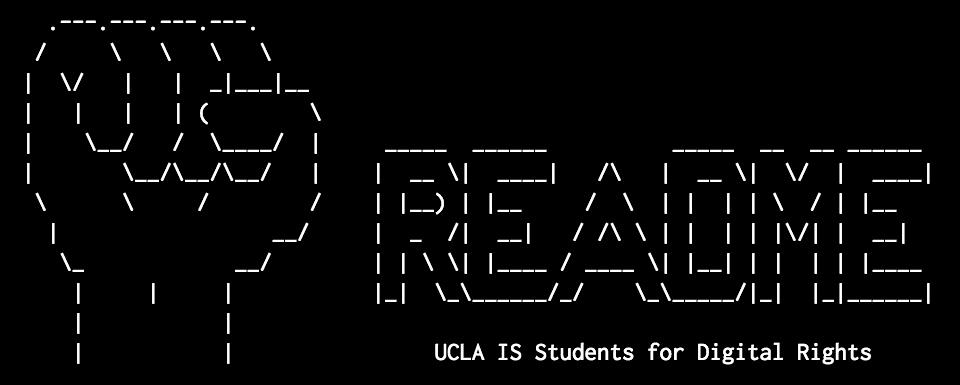
image from https://readme.gseis.ucla.edu/about/
README advocates for digital rights including privacy, security, access, and intellectual freedom within libraries, archives, and information work. Initiated by UCLA MLIS students in 2016, README also welcomes IS PhD students and faculty and seeks bridges to other organizations on the UCLA campus and in its libraries.
https://readme.gseis.ucla.edu/
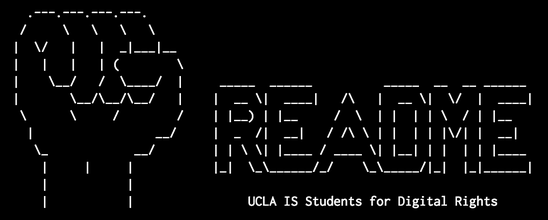
image from https://readme.gseis.ucla.edu/about/
(528)
2016
Feminist.AI
Christine Meinders, Claire le Nobel
Feminist.AI is a community AI research and design group focused on critical making as a response to hegemonic AI. Rather than simply criticize the lack of diversity in AI design and development, we propose an alternative by co-designing intelligent products, experiences and futures from a feminist posthumanist (inclusive) approach. We do this by using AI Art and Design projects to create AI products, experiences and systems. We reference the works of Dr. N. Katherine Hayles, Dr. Dara Blumenthal and Dr. Rebecca Fiebrink (to name a few) with the larger goal of designing for embodiment in AI systems.
2016, Christine Meinders and Claire le Nobel, https://www.feminist.ai/
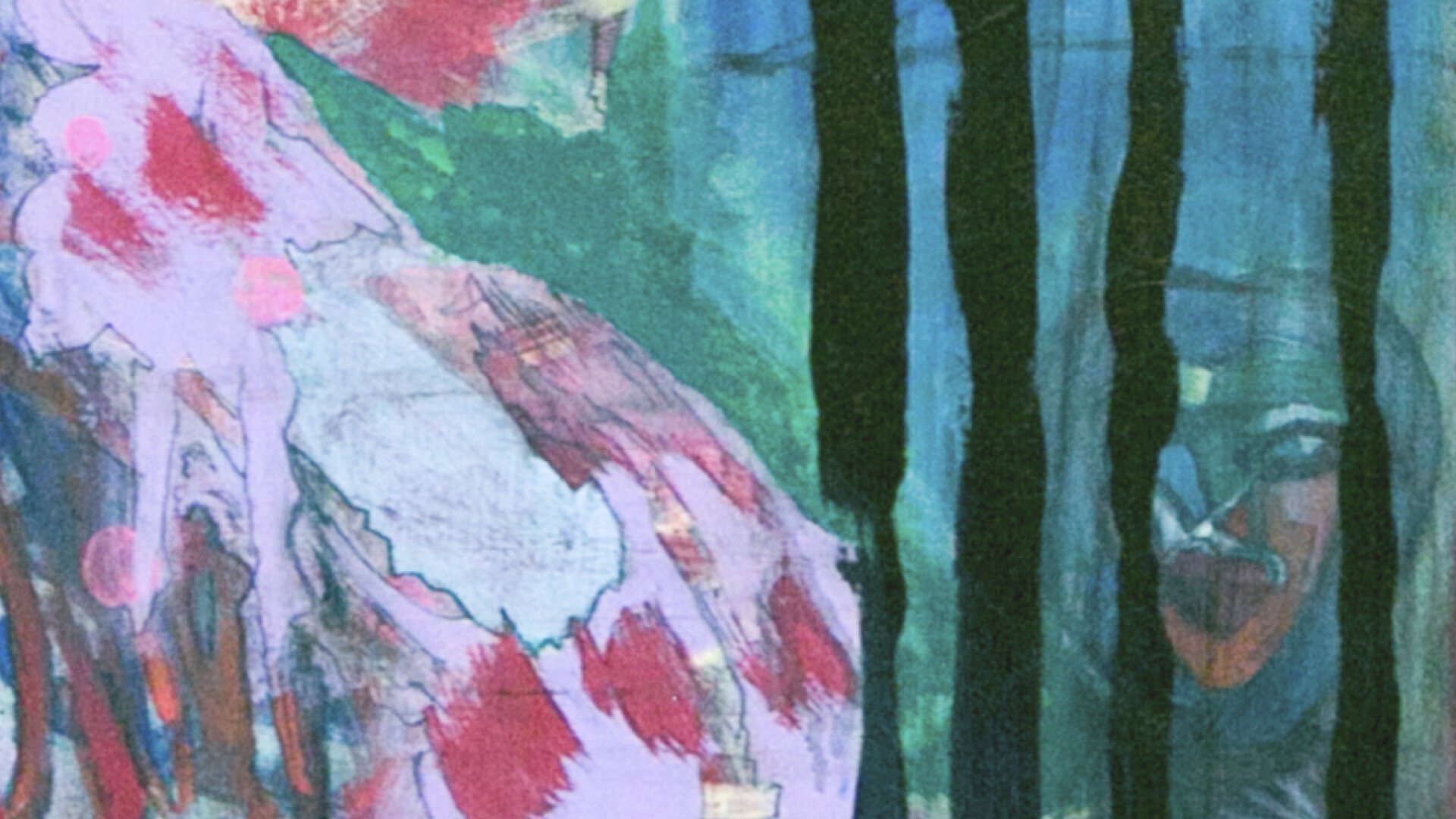
“Computer Vision Prison image by Yvonne Cruz for Feminist.AI Anti-hackathon 2017”, image from https://www.feminist.ai/history
Feminist.AI is a community AI research and design group focused on critical making as a response to hegemonic AI. Rather than simply criticize the lack of diversity in AI design and development, we propose an alternative by co-designing intelligent products, experiences and futures from a feminist posthumanist (inclusive) approach. We do this by using AI Art and Design projects to create AI products, experiences and systems. We reference the works of Dr. N. Katherine Hayles, Dr. Dara Blumenthal and Dr. Rebecca Fiebrink (to name a few) with the larger goal of designing for embodiment in AI systems.
2016, Christine Meinders and Claire le Nobel, https://www.feminist.ai/
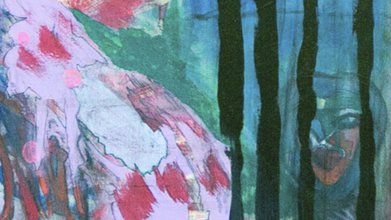
“Computer Vision Prison image by Yvonne Cruz for Feminist.AI Anti-hackathon 2017”, image from https://www.feminist.ai/history
(529)
2016
GenDyTrouble: Cyber*Feminist Computer Music
Annie Goh
GenDyTrouble: CyberFeminist Computer Music is the current instantiation of a larger ongoing project entitled GenDyTrouble. This part of the project takes the form of a multi-channel computer-music performance. The underlying concept of the project is a symbolic collision between Greek-French composer Iannis Xenakis’s technique of sound generation “Generation Dynamique Stochastique,” often shortened to GenDyn or sometimes GenDy and Judith Butler’s foundational work of queer theory, Gender Trouble: Feminism and the Subversion of Identity (1990). As a thought experiment, it asks what fusing the mathematical-generative power of computers with an emancipatory gender-politics could achieve. The project perches critically on the shoulders of precious cyberfeminists to both create and listen to what a sonic cyberfeminism could sound like. It is a provocation rather than an answer.
2016, Annie Goh, n.paradoxa: international feminist art journal 37 (January 2016): pp. 78–82; excerpt p. 78
Editor’s Note: Due to the markdown used in the Cyberfeminism Index, the asterisk in between Cyber Feminist has been removed in the excerpt.
https://www.are.na/block/7894265
GenDyTrouble: CyberFeminist Computer Music is the current instantiation of a larger ongoing project entitled GenDyTrouble. This part of the project takes the form of a multi-channel computer-music performance. The underlying concept of the project is a symbolic collision between Greek-French composer Iannis Xenakis’s technique of sound generation “Generation Dynamique Stochastique,” often shortened to GenDyn or sometimes GenDy and Judith Butler’s foundational work of queer theory, Gender Trouble: Feminism and the Subversion of Identity (1990). As a thought experiment, it asks what fusing the mathematical-generative power of computers with an emancipatory gender-politics could achieve. The project perches critically on the shoulders of precious cyberfeminists to both create and listen to what a sonic cyberfeminism could sound like. It is a provocation rather than an answer.
2016, Annie Goh, n.paradoxa: international feminist art journal 37 (January 2016): pp. 78–82; excerpt p. 78
Editor’s Note: Due to the markdown used in the Cyberfeminism Index, the asterisk in between Cyber Feminist has been removed in the excerpt.
https://www.are.na/block/7894265
(530)
2016
Feminism Online in West and Central Africa: Identities and Digital Colonisation
Caroline Tagny
The African Declaration of Internet Rights and Freedoms is a pan-African initiative to respond to the challenge of protecting human rights and freedoms on the internet. While communications rights activists have pushed forward the Declaration, there has been little involvement from the women's rights and sexual rights movements of the sub-region in debates related to internet governance, freedoms and rights that could potentially or are already influencing their capacity to discuss, mobilise and organise online. Significantly, the African Declaration has enshrined in its principles questions of linguistic diversity, freedom of assembly and association, and freedom of expression, to name a few. An analysis of these principles through the feminist lenses of the continent could be an interesting addition to the debates and the discussions.
2016, Caroline Tagny, GenderIT.org, May 31, 2016, https://www.genderit.org/node/4739/
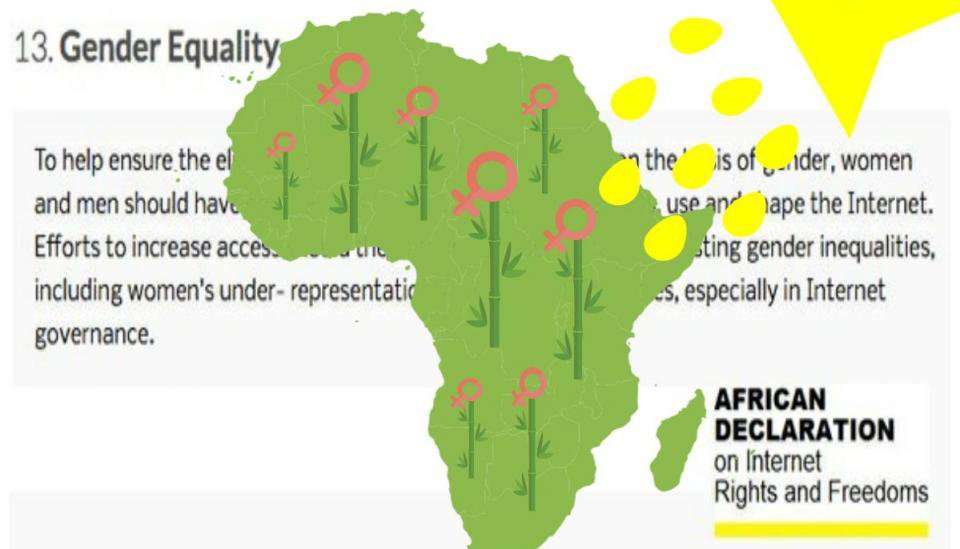
Image from https://www.genderit.org/node/4739/
The African Declaration of Internet Rights and Freedoms is a pan-African initiative to respond to the challenge of protecting human rights and freedoms on the internet. While communications rights activists have pushed forward the Declaration, there has been little involvement from the women's rights and sexual rights movements of the sub-region in debates related to internet governance, freedoms and rights that could potentially or are already influencing their capacity to discuss, mobilise and organise online. Significantly, the African Declaration has enshrined in its principles questions of linguistic diversity, freedom of assembly and association, and freedom of expression, to name a few. An analysis of these principles through the feminist lenses of the continent could be an interesting addition to the debates and the discussions.
2016, Caroline Tagny, GenderIT.org, May 31, 2016, https://www.genderit.org/node/4739/
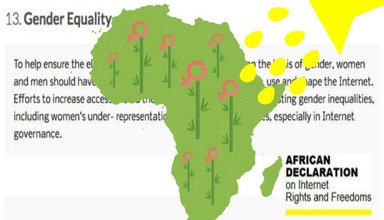
Image from https://www.genderit.org/node/4739/
(531)
2016
Center for Afrofuturist Studies
Anaïs Duplan
[We want to] live in a world where Black artists thrive. The Center for Afrofuturist Studies is an artist residency program that reimagines the futures of marginalized people by creating dynamic workspaces for artists of color. Dynamic means interactive, supportive, community-engaged, rigorous, and inclusive. The CAS wants to rethink and challenge what an arts practice that revolves around Black futurity looks like. We believe that's only possible when arts organizations commit to fully supporting the work being done by Black artists. To that end, CAS artists receive honoraria, funding for travel, housing, studio space, and logistical and programmatic support. Residencies include opportunities to engage both adult and youth audiences, as well as opportunities for studio visits and informal meetings with cultural workers.
2016, Anaïs Duplan, www.publicspaceone.com/cas
Iowa City
[We want to] live in a world where Black artists thrive. The Center for Afrofuturist Studies is an artist residency program that reimagines the futures of marginalized people by creating dynamic workspaces for artists of color. Dynamic means interactive, supportive, community-engaged, rigorous, and inclusive. The CAS wants to rethink and challenge what an arts practice that revolves around Black futurity looks like. We believe that's only possible when arts organizations commit to fully supporting the work being done by Black artists. To that end, CAS artists receive honoraria, funding for travel, housing, studio space, and logistical and programmatic support. Residencies include opportunities to engage both adult and youth audiences, as well as opportunities for studio visits and informal meetings with cultural workers.
2016, Anaïs Duplan, www.publicspaceone.com/cas
Iowa City
(532)
2016
워마드 [WOMAD]
워마드 [WOMAD] is a radical feminist online community based in South Korea. It has been criticized for extreme anti-male sentiment, including threats of and videos of sexual and physical assault of men. It split from Megalia, another feminist online community based in South Korea, after Megalia created rules against anti-gay slurs.
워마드 [WOMAD] is a radical feminist online community based in South Korea. It has been criticized for extreme anti-male sentiment, including threats of and videos of sexual and physical assault of men. It split from Megalia, another feminist online community based in South Korea, after Megalia created rules against anti-gay slurs.
(533)
2016
Tightrope Routines: A Feminist Artist Interviews The Internet’s Most Infamous Misogynist
Angela Washko
Tightrope Routines is an ongoing and frequently updated storytelling performance based on more than a year of exchanges between feminist artist Angela Washko (me) and pick-up artist, author, blogger and notorious manosphere leader Roosh V. The performance outlines the process from creating a platform to present parallel narratives to Roosh V’s conquest stories by interviewing women who have had sexual exchanges with him, to interviewing the international “love tourist” himself, to becoming a subject of the work myself, to ultimately reassessing the original plan for the project. Initially operating within the vein of tactical media, socially engaged art and artistic activism – the performance presents the story of an artist’s shift from goal-oriented activism to a more complicated and embodied ethnography of an online community extremely hostile toward and easily mobilized against women who self-identify as feminists. If feminists hope for feminism to have any relevancy in American publics broader than the art world, Tumblr and academia, they must adopt a model which is both empathetic to even the perspectives they disagree with and emblematic of the futures they aspire toward.
2016, Angela Washko, http://field-journal.com/issue-4/tightrope-routines-a-feminist-artist-interviews-the-internets-most-infamous-misogynist; submitted by Angela Washko
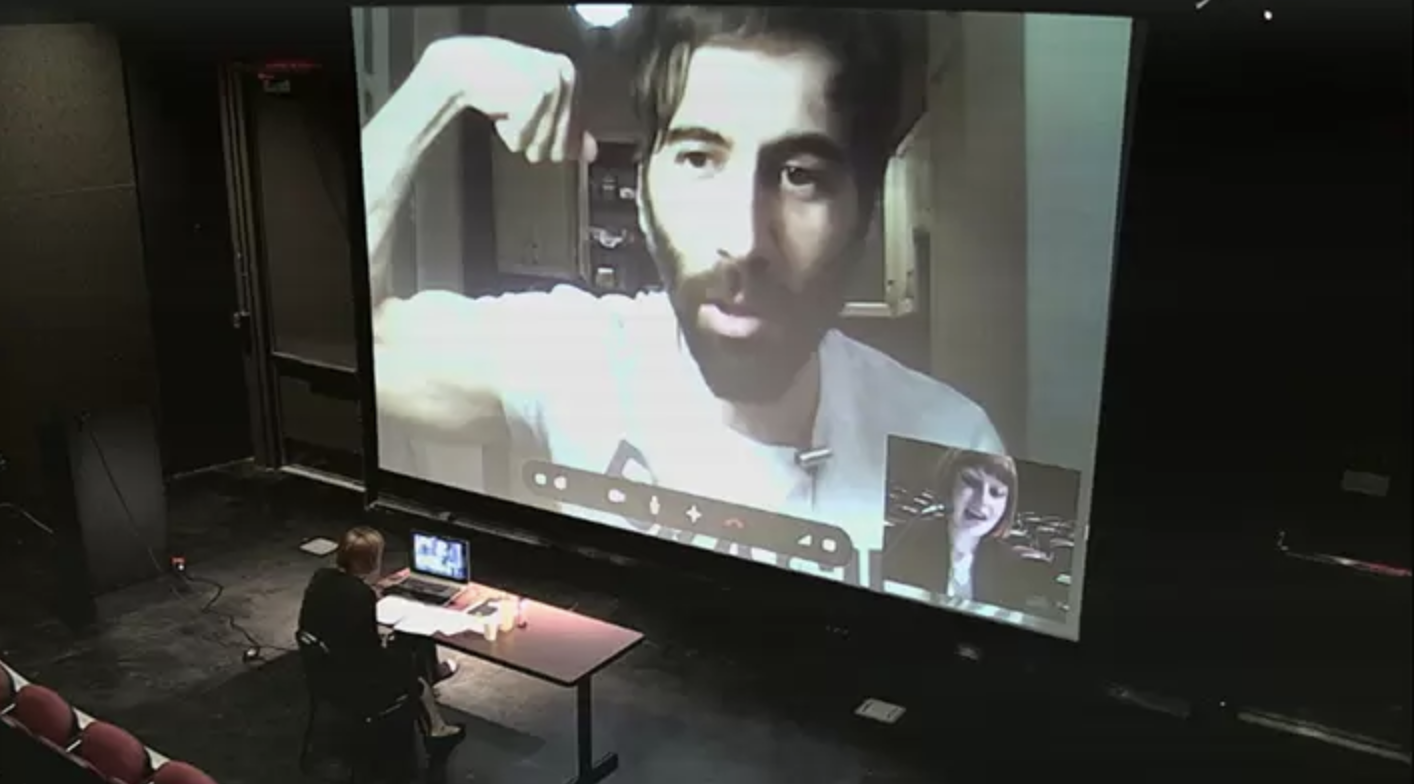
still from BANGED: An Interview with Roosh V by Angela Washko (image courtesy of Angela Washko)

Tightrope Routines still from performance video documentation (image courtesy of Angela Washko)
Tightrope Routines is an ongoing and frequently updated storytelling performance based on more than a year of exchanges between feminist artist Angela Washko (me) and pick-up artist, author, blogger and notorious manosphere leader Roosh V. The performance outlines the process from creating a platform to present parallel narratives to Roosh V’s conquest stories by interviewing women who have had sexual exchanges with him, to interviewing the international “love tourist” himself, to becoming a subject of the work myself, to ultimately reassessing the original plan for the project. Initially operating within the vein of tactical media, socially engaged art and artistic activism – the performance presents the story of an artist’s shift from goal-oriented activism to a more complicated and embodied ethnography of an online community extremely hostile toward and easily mobilized against women who self-identify as feminists. If feminists hope for feminism to have any relevancy in American publics broader than the art world, Tumblr and academia, they must adopt a model which is both empathetic to even the perspectives they disagree with and emblematic of the futures they aspire toward.
2016, Angela Washko, http://field-journal.com/issue-4/tightrope-routines-a-feminist-artist-interviews-the-internets-most-infamous-misogynist; submitted by Angela Washko
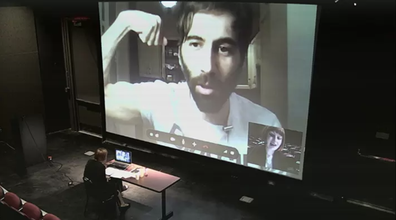
still from BANGED: An Interview with Roosh V by Angela Washko (image courtesy of Angela Washko)

Tightrope Routines still from performance video documentation (image courtesy of Angela Washko)
(534)
2016
A (Digital) Giant Awakens—Invigorating Media Studies with Asian Perspectives
Sun Sun Lim, Cheryll Soriano
Underlying this bustling digital landscape is Asia’s rich tapestry of history. The region is home to some of the world’s oldest, most advanced civilizations, with lasting legacies of artistic, cultural, and scientific innovation of widespread influence. Asian philosophical traditions such as Indian, Chinese, Japanese, Buddhist and Islamic have also stood the test of time, serving as the foundational principles of governance, education, social interaction, and enterprise. The transformations in Asia’s increasingly digitized sociotechnological landscape are as much shaping, as being shaped by, these enduring cultural and philosophical traditions. Yet the analytical frames used to understand the impact of digital media on Asia predominantly originate from the Global North, neither rooted in Asia’s sophisticated intellectual heritage nor reflective of the sociocultural practices of this dynamic region. [Asian Perspectives on Digital Culture] aims to internationalize media studies by infusing critical research topics and established theoretical frames with Asian perspectives.
2016, Sun Sun Lim and Cheryll Soriano, in Asian Perspectives on Digital Culture: Emerging Phenomena, Enduring Concepts, eds. Sun Sun Lim and Cheryll Soriano (New York: Routledge, 2016), pp. 3–14; excerpt p. 4
https://doi.org/10.4324/9781315731650
Underlying this bustling digital landscape is Asia’s rich tapestry of history. The region is home to some of the world’s oldest, most advanced civilizations, with lasting legacies of artistic, cultural, and scientific innovation of widespread influence. Asian philosophical traditions such as Indian, Chinese, Japanese, Buddhist and Islamic have also stood the test of time, serving as the foundational principles of governance, education, social interaction, and enterprise. The transformations in Asia’s increasingly digitized sociotechnological landscape are as much shaping, as being shaped by, these enduring cultural and philosophical traditions. Yet the analytical frames used to understand the impact of digital media on Asia predominantly originate from the Global North, neither rooted in Asia’s sophisticated intellectual heritage nor reflective of the sociocultural practices of this dynamic region. [Asian Perspectives on Digital Culture] aims to internationalize media studies by infusing critical research topics and established theoretical frames with Asian perspectives.
2016, Sun Sun Lim and Cheryll Soriano, in Asian Perspectives on Digital Culture: Emerging Phenomena, Enduring Concepts, eds. Sun Sun Lim and Cheryll Soriano (New York: Routledge, 2016), pp. 3–14; excerpt p. 4
https://doi.org/10.4324/9781315731650
(535)
2016
Refresh Collective
Salome Asega, Heather Dewey-Hagborg, Kathy High, Lynn Hershman Leeson, Maandeeq Mohamed, Tiare Ribeaux, Dr Camilla Mørk Rostvik, Dorothy R. Santos, Addie Wagenknecht
REFRESH developed out of a social media campaign started in 2015 by its co-founders Heather Dewey-Hagborg and Addie Wagenknecht, along with others. The campaign, #KissMyArs, exposed the problematic politics of the Golden Nica, the top prize awarded by the Ars Electronica Festival in Linz, Austria: for over thirty years, the Golden Nica has almost exclusively been given to men. The #KissMyArs campaign went viral, bringing attention to and instigating a debate about the gender inequality of the award. […] Ars Electronica never responded. This was the autumn of 2016, in the wake of Trump and Brexit. It was no longer enough to problematize the present—we needed bold new visions of the future and ideas from outside the mainstream. After two years of naming the problem, it was time to create new structures to elevate the voices of those working at the intersection of art, science, and technology who were not being heard and who could offer fresh perspectives on this transdisciplinary practice—and REFRESH was born. […] The status quo is no longer our status.
2016, Salome Asega, Heather Dewey-Hagborg, Kathy High, Lynn Hershman Leeson, Maandeeq Mohamed, Tiare Ribeaux, Dr. Camilla Mørk Rostvik, Dorothy R. Santos, and Addie Wagenknecht, https://refreshart.tech/
REFRESH developed out of a social media campaign started in 2015 by its co-founders Heather Dewey-Hagborg and Addie Wagenknecht, along with others. The campaign, #KissMyArs, exposed the problematic politics of the Golden Nica, the top prize awarded by the Ars Electronica Festival in Linz, Austria: for over thirty years, the Golden Nica has almost exclusively been given to men. The #KissMyArs campaign went viral, bringing attention to and instigating a debate about the gender inequality of the award. […] Ars Electronica never responded. This was the autumn of 2016, in the wake of Trump and Brexit. It was no longer enough to problematize the present—we needed bold new visions of the future and ideas from outside the mainstream. After two years of naming the problem, it was time to create new structures to elevate the voices of those working at the intersection of art, science, and technology who were not being heard and who could offer fresh perspectives on this transdisciplinary practice—and REFRESH was born. […] The status quo is no longer our status.
2016, Salome Asega, Heather Dewey-Hagborg, Kathy High, Lynn Hershman Leeson, Maandeeq Mohamed, Tiare Ribeaux, Dr. Camilla Mørk Rostvik, Dorothy R. Santos, and Addie Wagenknecht, https://refreshart.tech/
(536)
2016
Black Glitch in the Hour of Chaos
Marisa Parham
(about) “On November 30, 2016, the Institute for Digital Arts & Humanities hosted the IDAH Annual Lecture with Marisa Parham. To an audience of students and faculty from across the university, Dr. Parham delivered the talk “Black Glitch in the Hour of Chaos.”As part of IDAH’s 2016-17 exploration of Diversity and Digital Culture, Parham’s talk considered “how might we conceptualize ‘the digital’ as a kind of mediation that articulates the time and space of diasporic experience?” In answer, Parham’ explored “rememory, affective excess, and glitch aesthetics in Toni Morrison’s Beloved, Hiro Murai’s video for Flying Lotus & Kendrick Lamar’s ‘Never Catch Me,’ and Zun Lee’s digital project, ‘Fade Resistance.’”
https://idah.indiana.edu/blog/marisa-parham-black-glitch.html
(about) “On November 30, 2016, the Institute for Digital Arts & Humanities hosted the IDAH Annual Lecture with Marisa Parham. To an audience of students and faculty from across the university, Dr. Parham delivered the talk “Black Glitch in the Hour of Chaos.”As part of IDAH’s 2016-17 exploration of Diversity and Digital Culture, Parham’s talk considered “how might we conceptualize ‘the digital’ as a kind of mediation that articulates the time and space of diasporic experience?” In answer, Parham’ explored “rememory, affective excess, and glitch aesthetics in Toni Morrison’s Beloved, Hiro Murai’s video for Flying Lotus & Kendrick Lamar’s ‘Never Catch Me,’ and Zun Lee’s digital project, ‘Fade Resistance.’”
https://idah.indiana.edu/blog/marisa-parham-black-glitch.html
(537)
2016
Incomputable and Instrumental Possibility
Antonia Majaca, Luciana Parisi
In Octavia Butler’s Lilith’s Brood trilogy, Lilith Iyapo, an African-American woman, awakens in a cell many centuries after the human race has effectively destroyed itself with nuclear weapons. […] The Oankali, a nomadic alien species, […] have repaired the Earth and now the remaining humans must combine their DNA with the Oankali’s third sex in order to redesign a new race purged of humanity’s self-destructive, hierarchical tendencies. Lilith must become the mother of a new, inhuman race in order for humans, in whatever form, to survive on Earth.
As one of the famous points of entry into Afrofuturism, Butler’s writings allegorize the normative patriarchy and the alienated condition of black people, the racist culture of the United States, and reflect the Cold War’s pervasive threat of nuclear disaster. At the same time, Xenogenesis—the trilogy’s original title—introduces a new approach to the feminist critique of biopolitical instrumentality. […] In other words, Lilith embraces her abduction and starts to reason with the instrument and from within the logic of the instrument towards an unknown unknown, a previously unthinkable and entirely alien model of subjectivation.
2016, Antonia Majaca and Luciana Parisi, e-flux Journal 77 (November 2016), https://www.e-flux.com/journal/77/76322/the-incomputable-and-instrumental-possibility/
In Octavia Butler’s Lilith’s Brood trilogy, Lilith Iyapo, an African-American woman, awakens in a cell many centuries after the human race has effectively destroyed itself with nuclear weapons. […] The Oankali, a nomadic alien species, […] have repaired the Earth and now the remaining humans must combine their DNA with the Oankali’s third sex in order to redesign a new race purged of humanity’s self-destructive, hierarchical tendencies. Lilith must become the mother of a new, inhuman race in order for humans, in whatever form, to survive on Earth.
As one of the famous points of entry into Afrofuturism, Butler’s writings allegorize the normative patriarchy and the alienated condition of black people, the racist culture of the United States, and reflect the Cold War’s pervasive threat of nuclear disaster. At the same time, Xenogenesis—the trilogy’s original title—introduces a new approach to the feminist critique of biopolitical instrumentality. […] In other words, Lilith embraces her abduction and starts to reason with the instrument and from within the logic of the instrument towards an unknown unknown, a previously unthinkable and entirely alien model of subjectivation.
2016, Antonia Majaca and Luciana Parisi, e-flux Journal 77 (November 2016), https://www.e-flux.com/journal/77/76322/the-incomputable-and-instrumental-possibility/
(538)
2016
Geochicas
GeoChicas es una iniciativa que inició alrededor de la conferencia anual de la comunidad OpenStreetMap Latinoamérica, the ‘State of the Map’ realizada en Sao Paulo, Brasil, en noviembre 2016, para realizar proyectos conjuntos, colaborativos y participativos con el objetivo de cerrar la brecha de género en la comunidad de OpenStreetMap, donde se estima que las mujeres representan un 3% de las personas que colaboran globalmente.
GeoChicas is an initiative that began around the annual conference of the OpenStreetMap Latin America community, the “State of the Map” held in Sao Paulo, Brazil, in November 2016, to carry out joint, collaborative and participatory projects with the aim of closing the gender gap in the OpenStreetMap community, where it is estimated that women represent 3% of the people who collaborate globally.
2016, https://geochicas.org/; referred by Paola Ricaurte Quijano
Brasil
GeoChicas es una iniciativa que inició alrededor de la conferencia anual de la comunidad OpenStreetMap Latinoamérica, the ‘State of the Map’ realizada en Sao Paulo, Brasil, en noviembre 2016, para realizar proyectos conjuntos, colaborativos y participativos con el objetivo de cerrar la brecha de género en la comunidad de OpenStreetMap, donde se estima que las mujeres representan un 3% de las personas que colaboran globalmente.
GeoChicas is an initiative that began around the annual conference of the OpenStreetMap Latin America community, the “State of the Map” held in Sao Paulo, Brazil, in November 2016, to carry out joint, collaborative and participatory projects with the aim of closing the gender gap in the OpenStreetMap community, where it is estimated that women represent 3% of the people who collaborate globally.
2016, https://geochicas.org/; referred by Paola Ricaurte Quijano
Brasil
(539)
2016
Feminism and (Un)Hacking
Shaowen Bardzell, Lilly Nguyen, and Sophie Toupin (SSL Nagbot) (ed)
(540)
2016
Feminist Hacking/Making: Exploring New Gender Horizons of Possibility
SSL Nagbot
Feminist hacking/making consists of a wide-range of scholarship and activities that seek to redress the gender representation problem in hacking/making. First, many feminist interventions into hacking/making seek to create new venues for women, people of color, and members of the queer and trans community to engage in hacking practices such as writing computer code or building and repairing computer hardware. Second, feminist hackers have also sought to bring the technical acumen of hacking to address specifically women-centered problems. These feminist interventions into hacking draw from recognition of the lack of diversity in hacking more generally and attempt to push the boundaries of the heternormative masculine culture of hacking.
2016, SSL Nagbot (Lilly Nguyen, Sophie Toupin, and Shaowen Bardzell), in “Feminism and (Un)Hacking,” ed. SSL Nagbot (Lilly Nguyen, Sophie Toupin, and Shaowen Bardzell), special issue, Journal of Peer Production 8 (March 2016), http://peerproduction.net/issues/issue-8-feminism-and-unhacking-2/feminist-hackingmaking-exploring-new-gender-horizons-of-possibility/
Feminist hacking/making consists of a wide-range of scholarship and activities that seek to redress the gender representation problem in hacking/making. First, many feminist interventions into hacking/making seek to create new venues for women, people of color, and members of the queer and trans community to engage in hacking practices such as writing computer code or building and repairing computer hardware. Second, feminist hackers have also sought to bring the technical acumen of hacking to address specifically women-centered problems. These feminist interventions into hacking draw from recognition of the lack of diversity in hacking more generally and attempt to push the boundaries of the heternormative masculine culture of hacking.
2016, SSL Nagbot (Lilly Nguyen, Sophie Toupin, and Shaowen Bardzell), in “Feminism and (Un)Hacking,” ed. SSL Nagbot (Lilly Nguyen, Sophie Toupin, and Shaowen Bardzell), special issue, Journal of Peer Production 8 (March 2016), http://peerproduction.net/issues/issue-8-feminism-and-unhacking-2/feminist-hackingmaking-exploring-new-gender-horizons-of-possibility/
(541)
2016
Legacies of Craft and the Centrality of Failure in a Mother-Operated Hackerspace
Sarah Fox, Daniela K Rosner
Popular portraits of hacking have often relied on histories of hobbyist engineering culture rooted in tales of middle-class, college-educated, and often male technologists. Since 2012, members of a mother-operated hackerspace in the East Bay of San Francisco, California, have countered these narratives, revealing hackerspaces as sites with which to refigure masculine claims to innovation and progress. Drawing on critical craft studies and studies of therapeutic culture, this article examines the workings of Mothership HackerMoms and its series of workshops called Failure Club, a project motivated by a desire to support women’s creative pursuits with the onset of motherhood. By integrating feminist legacies of craftwork with the centrality of failure—exposing personal failures and failures to transform hacker cultures—members not only energize new modes of hacking activity but also hack the very ontology of hacking.
2016, Sarah Fox and Daniela K Rosner, in “The Democratization of Hacking and Making,” eds. Jeremy Hunsinger and Andrew Schrock, special issue, New Media and Society 18, no. 4 (April 2016): pp. 558–580; excerpt from abstract
Popular portraits of hacking have often relied on histories of hobbyist engineering culture rooted in tales of middle-class, college-educated, and often male technologists. Since 2012, members of a mother-operated hackerspace in the East Bay of San Francisco, California, have countered these narratives, revealing hackerspaces as sites with which to refigure masculine claims to innovation and progress. Drawing on critical craft studies and studies of therapeutic culture, this article examines the workings of Mothership HackerMoms and its series of workshops called Failure Club, a project motivated by a desire to support women’s creative pursuits with the onset of motherhood. By integrating feminist legacies of craftwork with the centrality of failure—exposing personal failures and failures to transform hacker cultures—members not only energize new modes of hacking activity but also hack the very ontology of hacking.
2016, Sarah Fox and Daniela K Rosner, in “The Democratization of Hacking and Making,” eds. Jeremy Hunsinger and Andrew Schrock, special issue, New Media and Society 18, no. 4 (April 2016): pp. 558–580; excerpt from abstract
(542)
2016
Bitcoin, Cookies, and QR Codes: an introductory dark web handbook
cybertwee
“it’s a primer on accessing the dark web and using bitcoin. each numbered and limited edition copy comes with $15 in bitcoin, which you can use to make a bitcoin transaction and have homemade super cute edible cookies sent to your house. the zines plus bitcoin are $30.” —cybertwee, excerpt
http://cybertwee.net/cybertwee-dark-web-handbook/

Image from http://cybertwee.net/cybertwee-dark-web-handbook/
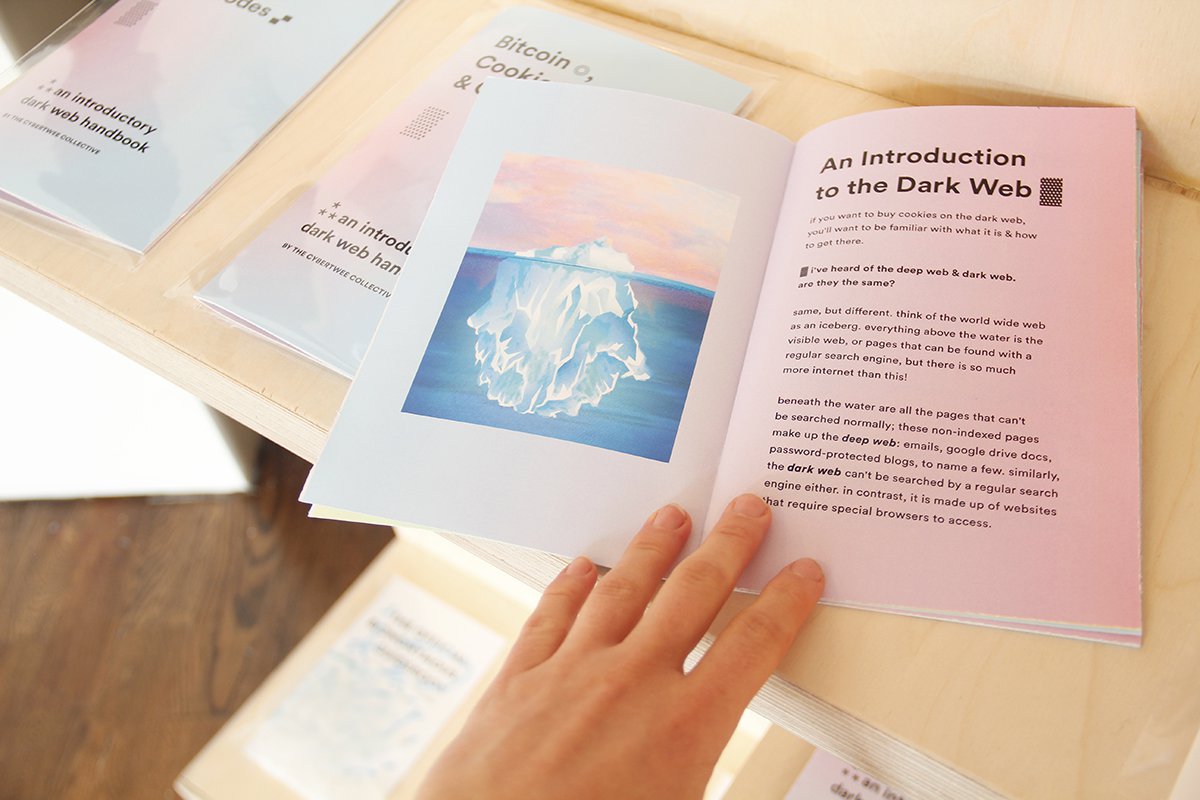
Image from http://cybertwee.net/cybertwee-dark-web-handbook/
“it’s a primer on accessing the dark web and using bitcoin. each numbered and limited edition copy comes with $15 in bitcoin, which you can use to make a bitcoin transaction and have homemade super cute edible cookies sent to your house. the zines plus bitcoin are $30.” —cybertwee, excerpt
http://cybertwee.net/cybertwee-dark-web-handbook/

Image from http://cybertwee.net/cybertwee-dark-web-handbook/

Image from http://cybertwee.net/cybertwee-dark-web-handbook/
(543)
2016
Wandering / WILDING: Blackness on the Internet
Legacy Russell
Wandering points to the socio-cultural identity of the flâneur, mused on by Baudelaire as “a roving soul in search of a body,” later reintroduced into the academy by Walter Benjamin as a mark of modernity distinctly threatened by developments of an impending Industrial Revolution. Alternately, wilding is a slang word which came into mainstream use in 1980s New York, a dog-whistle term used to describe the gang assault of strangers that rose out of the controversial Central Park jogger case in 1989 wherein five teenagers of color were accused of and jailed for a crime they did not commit.
In relation to this event “WILDING” was the cover headline of New York’s Daily News on April 22nd, 1989 and became part of the fear-mongering language used to mark the collective socializing of black and brown bodies as inherent public threat and, in turn, justify increased profiling and policing of such bodies throughout New York City. With ongoing media attention turned to #BlackLivesMatter, a global movement that continues to grow online and out in the world in the US, UK, and beyond, the reality of such policing as international phenomena has sparked a much-needed discussion surrounding freedom of movement, as well as race and class tied to the exercising of civil liberties.
2016, Legacy Russell, cur. (exhibition, IMT Gallery, London, UK, November 4–December 18, 2016); excerpt from Legacy Russell, “‘Wandering / WILDING: Blackness on the Internet,’ at IMT Gallery, London,” Mousse Magazine, November 20, 2016, https://www.moussemagazine.it/magazine/wandering-wilding-blackness-on-the-internet-at-imt-gallery-london/
*Artists include niv Acosta, Hannah Black, Evan Ifekoya, E. Jane, Devin Kenny, Tabita Rezaire, and Fannie Sosa.
Editor’s Note: This exhibition was conceived as a response to “The Peril of Black Mobility,” a critical essay by Doreen St. Félix. Written for the exhibition Wandering / WILDING: Blackness on the Internet, Aria Dean’s eponymous essay was republished in Berfrois. It ends: “Within the public space that these video frame, throughout digital networks, and here in the gallery, the black crowd manifests. In our chaos, our strongest feeling, our crowdedness, we are wilding.” —MS*
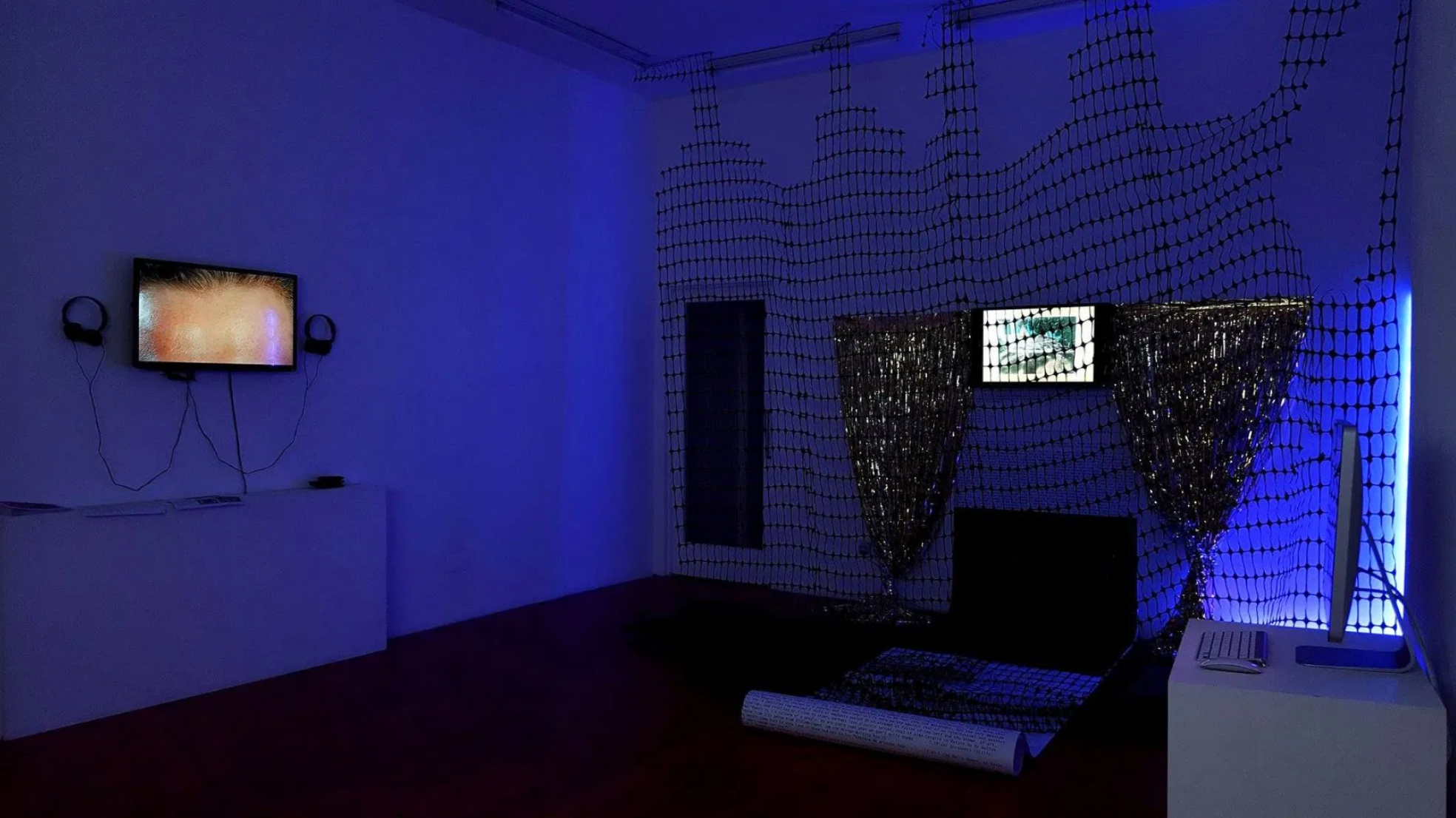
““Wandering/WILDING: Blackness on the Internet’” (2016) Exhibition view. Courtesy Hannah Black, Evan Ifekoya + IMT Gallery, London”, https://contemptorary.org/wanderingwilding/
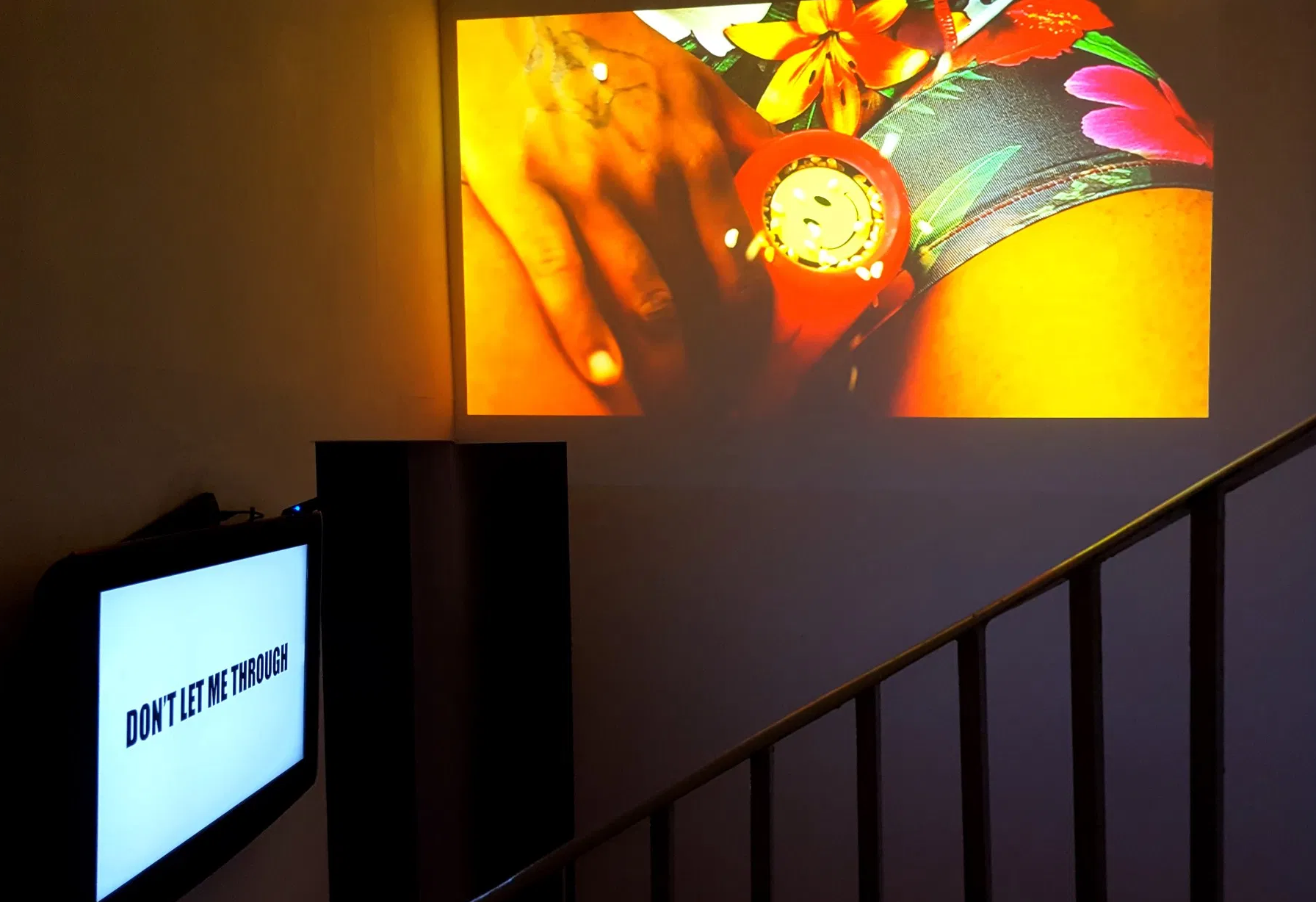
”‘Wandering/WILDING: Blackness on the Internet’ (2016) Exhibition view. Courtesy Fannie Sosa, niv Acosta + IMT Gallery, London”, https://contemptorary.org/wanderingwilding/
Wandering points to the socio-cultural identity of the flâneur, mused on by Baudelaire as “a roving soul in search of a body,” later reintroduced into the academy by Walter Benjamin as a mark of modernity distinctly threatened by developments of an impending Industrial Revolution. Alternately, wilding is a slang word which came into mainstream use in 1980s New York, a dog-whistle term used to describe the gang assault of strangers that rose out of the controversial Central Park jogger case in 1989 wherein five teenagers of color were accused of and jailed for a crime they did not commit.
In relation to this event “WILDING” was the cover headline of New York’s Daily News on April 22nd, 1989 and became part of the fear-mongering language used to mark the collective socializing of black and brown bodies as inherent public threat and, in turn, justify increased profiling and policing of such bodies throughout New York City. With ongoing media attention turned to #BlackLivesMatter, a global movement that continues to grow online and out in the world in the US, UK, and beyond, the reality of such policing as international phenomena has sparked a much-needed discussion surrounding freedom of movement, as well as race and class tied to the exercising of civil liberties.
2016, Legacy Russell, cur. (exhibition, IMT Gallery, London, UK, November 4–December 18, 2016); excerpt from Legacy Russell, “‘Wandering / WILDING: Blackness on the Internet,’ at IMT Gallery, London,” Mousse Magazine, November 20, 2016, https://www.moussemagazine.it/magazine/wandering-wilding-blackness-on-the-internet-at-imt-gallery-london/
*Artists include niv Acosta, Hannah Black, Evan Ifekoya, E. Jane, Devin Kenny, Tabita Rezaire, and Fannie Sosa.
Editor’s Note: This exhibition was conceived as a response to “The Peril of Black Mobility,” a critical essay by Doreen St. Félix. Written for the exhibition Wandering / WILDING: Blackness on the Internet, Aria Dean’s eponymous essay was republished in Berfrois. It ends: “Within the public space that these video frame, throughout digital networks, and here in the gallery, the black crowd manifests. In our chaos, our strongest feeling, our crowdedness, we are wilding.” —MS*
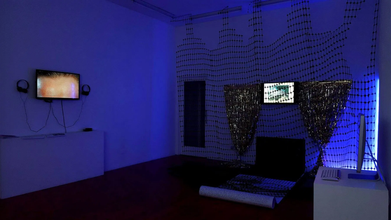
““Wandering/WILDING: Blackness on the Internet’” (2016) Exhibition view. Courtesy Hannah Black, Evan Ifekoya + IMT Gallery, London”, https://contemptorary.org/wanderingwilding/
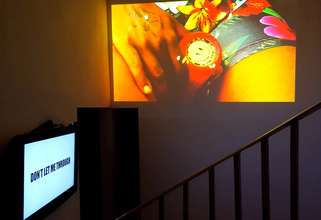
”‘Wandering/WILDING: Blackness on the Internet’ (2016) Exhibition view. Courtesy Fannie Sosa, niv Acosta + IMT Gallery, London”, https://contemptorary.org/wanderingwilding/
(544)
2016–
2019
No! to Online Abuse and Harassment (NOAH)
Ashell Forde
Imagine being the victim of online abuse and being ostracized and ignored by family, friends, law enforcement officials and society in general. Also imagine not knowing of any organization you could turn to for help or what legal remedies exist to provide you with justice in your situation. This has been the plight of many individuals across Barbados, particularly young women. Recognising the unique situation of such individuals and a need to provide them with a voice to be heard, registered charity No! to Online Abuse and Harassment (NOAH) was born.
2016, Ashell Forde, https://www.dbresearchservices.com/blog/no-to-online-abuse-and-harassment/; referred by Charlotte Webb
Barbados
Imagine being the victim of online abuse and being ostracized and ignored by family, friends, law enforcement officials and society in general. Also imagine not knowing of any organization you could turn to for help or what legal remedies exist to provide you with justice in your situation. This has been the plight of many individuals across Barbados, particularly young women. Recognising the unique situation of such individuals and a need to provide them with a voice to be heard, registered charity No! to Online Abuse and Harassment (NOAH) was born.
2016, Ashell Forde, https://www.dbresearchservices.com/blog/no-to-online-abuse-and-harassment/; referred by Charlotte Webb
Barbados
(545)
2016
Ciberseguras
Somos varias, cada una con distintos poderes, venimos de diferentes galaxias pero constelamos juntas. Nuestro espacio compartido es la red y nos unimos para ahuyentar a las fuerzas ocultas que nos atacan. Para hacerles frente, conspiramos en aquelarres ciberfeministas. Ciberseguras es el fuego que nos reúne en un círculo de goce, baile y encuentro. Aquí aprendemos juntas.
We vary, each with different powers, we come from different galaxies but we are a constellation together. Our shared space is the network and we come together to scare away the hidden forces that attack us. To confront them, we conspire in cyberfeminist covens. Cybersecurity is the fire that brings us together in a circle of enjoyment, dance and encounter. Here we learn together.
2016, https://ciberseguras.org/; referred by Paola Ricaurte Quijano
Brasil

image from https://ciberseguras.org/nosotras/
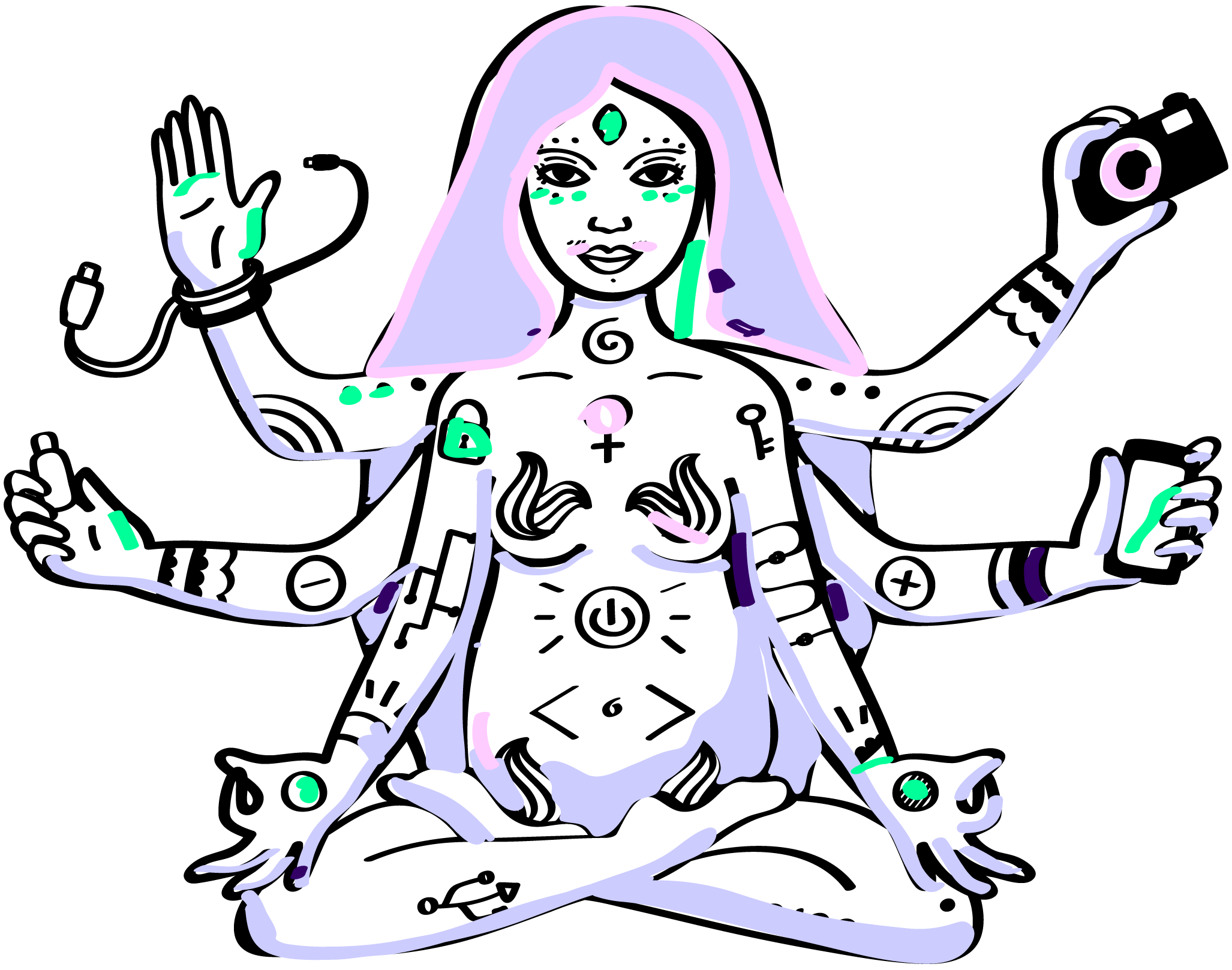
image from https://ciberseguras.org/nosotras/
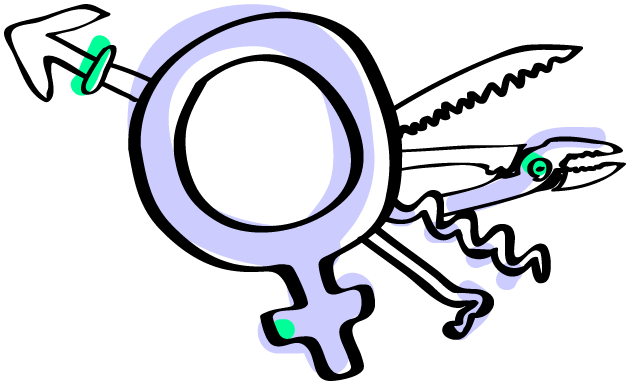
image from https://ciberseguras.org/

image from https://ciberseguras.org/
Somos varias, cada una con distintos poderes, venimos de diferentes galaxias pero constelamos juntas. Nuestro espacio compartido es la red y nos unimos para ahuyentar a las fuerzas ocultas que nos atacan. Para hacerles frente, conspiramos en aquelarres ciberfeministas. Ciberseguras es el fuego que nos reúne en un círculo de goce, baile y encuentro. Aquí aprendemos juntas.
We vary, each with different powers, we come from different galaxies but we are a constellation together. Our shared space is the network and we come together to scare away the hidden forces that attack us. To confront them, we conspire in cyberfeminist covens. Cybersecurity is the fire that brings us together in a circle of enjoyment, dance and encounter. Here we learn together.
2016, https://ciberseguras.org/; referred by Paola Ricaurte Quijano
Brasil

image from https://ciberseguras.org/nosotras/

image from https://ciberseguras.org/nosotras/

image from https://ciberseguras.org/

image from https://ciberseguras.org/
(546)
2016
WikiMujeres
Somos un grupo de usuarias de Wikipedia preocupadas por la diversidad y la neutralidad de la Wikipedia y dispuestas a trabajar para disminuir (y en un futuro eliminar) la brecha de género y culturas que existe en la enciclopedia más consultada en internet. Queremos romper con los miedos que sienten muchas personas al acercarse al entorno wiki y poner en valor las aportaciones individuales a la narración colectiva de la Historia, que es NUESTRA Historia. Y que, sin el punto de vista de las mujeres, no será una narración ni equilibrada ni completa.
We are a group of Wikipedia users concerned about the diversity and neutrality of Wikipedia and willing to work to reduce (and in the future eliminate) the gender and culture gap that exists in the most consulted encyclopedia on the internet. We want to break with the fears that many people feel when approaching the wiki environment and value the individual contributions to the collective narrative of History, which is OUR History. And that, without the women’s point of view, it will not be a balanced or complete narrative.

Banner image, 2018, https://wikimujeres.wiki/2018/03/30/descubre-que-es-una-editatona/
Somos un grupo de usuarias de Wikipedia preocupadas por la diversidad y la neutralidad de la Wikipedia y dispuestas a trabajar para disminuir (y en un futuro eliminar) la brecha de género y culturas que existe en la enciclopedia más consultada en internet. Queremos romper con los miedos que sienten muchas personas al acercarse al entorno wiki y poner en valor las aportaciones individuales a la narración colectiva de la Historia, que es NUESTRA Historia. Y que, sin el punto de vista de las mujeres, no será una narración ni equilibrada ni completa.
We are a group of Wikipedia users concerned about the diversity and neutrality of Wikipedia and willing to work to reduce (and in the future eliminate) the gender and culture gap that exists in the most consulted encyclopedia on the internet. We want to break with the fears that many people feel when approaching the wiki environment and value the individual contributions to the collective narrative of History, which is OUR History. And that, without the women’s point of view, it will not be a balanced or complete narrative.
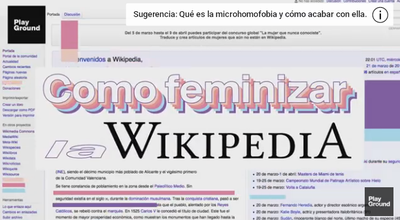
Banner image, 2018, https://wikimujeres.wiki/2018/03/30/descubre-que-es-una-editatona/
(547)
2016
Hacking the Feminist Disabled Body
Laura Forlano
I am not a hacker or a maker. I do not tinker or tailor, knit or bake. I am more likely to buy it than DIY it. So, why should I write an essay on hacking the feminist body? In fact, it is only through my own body’s failure and breakdown that I have come to participate in and redefine the socio-technical practices that constitute hacking and (un)hacking. Like my own cyborg body, the narrative that follows—at times intimate and personal and sometimes abstract and theoretical—is a kind of hybrid. It is through this hybrid scholarship that I hope to contribute to the development of a deeper understanding of a feminist hacker ethic(s).
2016, Laura Forlano, in “Feminism and (Un)Hacking,” ed. SSL Nagbot (Lilly Nguyen, Sophie Toupin, and Shaowen Bardzell), special issue, Journal of Peer Production 8 (March 2016), http://peerproduction.net/issues/issue-8-feminism-and-unhacking-2/peer-reviewed-papers/issue-8-feminism-and-unhackingpeer-reviewed-papers-2hacking-the-feminist-disabled-body/
I am not a hacker or a maker. I do not tinker or tailor, knit or bake. I am more likely to buy it than DIY it. So, why should I write an essay on hacking the feminist body? In fact, it is only through my own body’s failure and breakdown that I have come to participate in and redefine the socio-technical practices that constitute hacking and (un)hacking. Like my own cyborg body, the narrative that follows—at times intimate and personal and sometimes abstract and theoretical—is a kind of hybrid. It is through this hybrid scholarship that I hope to contribute to the development of a deeper understanding of a feminist hacker ethic(s).
2016, Laura Forlano, in “Feminism and (Un)Hacking,” ed. SSL Nagbot (Lilly Nguyen, Sophie Toupin, and Shaowen Bardzell), special issue, Journal of Peer Production 8 (March 2016), http://peerproduction.net/issues/issue-8-feminism-and-unhacking-2/peer-reviewed-papers/issue-8-feminism-and-unhackingpeer-reviewed-papers-2hacking-the-feminist-disabled-body/
(548)
2016
An Interview with Legacy Russell: Wandering/WILDING
Legacy Russell, Eunsong Kim, Gelare Khoshgozaran
How to resist via a material (the Internet) that has a history of being used as a tool of anti-resistance? How to find freedom within a space that is absolutely not indiscriminately free? What is the cost of artists performing this freedom via the Internet in lieu of being able to claim freedom completely—both online, and AFK? The fact of the matter is, the Internet has never been a real utopia, despite the fact that “cyberspace” has been mythologised as such; its early predecessor, ARPANET, was originally developed for the military. Thus it is a logical pathway to map the history of COINTELPRO surveillance within black political movements and communities to the use of the Internet as a means of monitoring contemporary activism. Why are people surprised by this? This [cyber]space wasn’t made for people of color.
2016, Legacy Russell, interview by Eunsong Kim and Gelare Khoshgozaran, contemptorary, December 13, 2016, https://contemptorary.org/wanderingwilding/
https://contemptorary.org/wanderingwilding/
How to resist via a material (the Internet) that has a history of being used as a tool of anti-resistance? How to find freedom within a space that is absolutely not indiscriminately free? What is the cost of artists performing this freedom via the Internet in lieu of being able to claim freedom completely—both online, and AFK? The fact of the matter is, the Internet has never been a real utopia, despite the fact that “cyberspace” has been mythologised as such; its early predecessor, ARPANET, was originally developed for the military. Thus it is a logical pathway to map the history of COINTELPRO surveillance within black political movements and communities to the use of the Internet as a means of monitoring contemporary activism. Why are people surprised by this? This [cyber]space wasn’t made for people of color.
2016, Legacy Russell, interview by Eunsong Kim and Gelare Khoshgozaran, contemptorary, December 13, 2016, https://contemptorary.org/wanderingwilding/
https://contemptorary.org/wanderingwilding/
(549)
2016
대한민국 넷페미사: 배운여자 여시 페미나치 메갈… 넷페미 수난사 [Korean Netfemis: Learned Woman, Yeoshi, Feminachi, Megal… Netfemi’s History of Suffering]
Hee jeong Son (손희정)
손 연구원은 이날 2000년대 중반 이후부터 현재까지 온라인 공간에서 벌어진 젠더 이슈와 페미니즘의 변화를 소개했다. 그는 1990년대 중반의 사이버 페미니즘과 2010년대 중반의 온라인 페미니즘의 차이점에 대해 “90년대 페미니즘은 사이버 공간이 페미니즘 운동의 가능성 보여주고 젠더 벤딩 (gender bending: 일반화된 성적 정체성과 남녀 구분을 허무는 것)을 시험하며 안전하게 여성들이 대화할 수 있는 공간이었다”며 “반면, 2010년대 광대한 네트는 2030 여성들의 삶의 일부이자 조건이며 기반이 되는 공간” 이라고 설명했다. 하지만 그는 “2000년대 중반 페미니즘 운동이 대중운동으로서 말걸기를 실패했으나 사라진 것처럼 보였지만 단절된 것은 아니었다. 신자유주의 하에서 삶의 조건이 척박해지면서 페미니스트들은 ‘설명충’, ‘진지충’으로 치부됐다” 면서 “영페미니스트 운동은 일종의 기억 잠재성으로 남아있었고 지금 이 시대와 만나면서 페미니즘이 ‘리부트 (reboot)’ 됐다”고 표현했다.
Researcher Son introduced the gender issues and changes in feminism that took place in the online space from the mid-2000s to the present day. She talked about the difference between cyberfeminism in the mid-1990s and online feminism in the mid-2010s. “It was a space where women could safely communicate while learning.” On the other hand, the vast net of the 2010s is a space, a condition, and a base for women’s lives in 2030. But she said, “In the mid-2000s, the feminist movement failed to speak as a mass movement, but it seemed to have disappeared, but it was not cut off. Feminists were dismissed as ‘explaining insects’ and ‘sick insects’ as the conditions of life became desperate under neoliberalism.”
2016, Hee jeong Son [손희정]; excerpt from Hana Lee, [대한민국 넷페미사] 배운여자·여시·페미나치·메갈… 넷페미 수난사 [Korean Netfemis: Learned Woman, Yeoshi, Feminachi, Megal… Netfemi’s History of Suffering],” The Women’s News, October 13, 2016, https://www.womennews.co.kr/news/articleView.html?idxno=98578; referred by Soyoung Chong
South Korea
손 연구원은 이날 2000년대 중반 이후부터 현재까지 온라인 공간에서 벌어진 젠더 이슈와 페미니즘의 변화를 소개했다. 그는 1990년대 중반의 사이버 페미니즘과 2010년대 중반의 온라인 페미니즘의 차이점에 대해 “90년대 페미니즘은 사이버 공간이 페미니즘 운동의 가능성 보여주고 젠더 벤딩 (gender bending: 일반화된 성적 정체성과 남녀 구분을 허무는 것)을 시험하며 안전하게 여성들이 대화할 수 있는 공간이었다”며 “반면, 2010년대 광대한 네트는 2030 여성들의 삶의 일부이자 조건이며 기반이 되는 공간” 이라고 설명했다. 하지만 그는 “2000년대 중반 페미니즘 운동이 대중운동으로서 말걸기를 실패했으나 사라진 것처럼 보였지만 단절된 것은 아니었다. 신자유주의 하에서 삶의 조건이 척박해지면서 페미니스트들은 ‘설명충’, ‘진지충’으로 치부됐다” 면서 “영페미니스트 운동은 일종의 기억 잠재성으로 남아있었고 지금 이 시대와 만나면서 페미니즘이 ‘리부트 (reboot)’ 됐다”고 표현했다.
Researcher Son introduced the gender issues and changes in feminism that took place in the online space from the mid-2000s to the present day. She talked about the difference between cyberfeminism in the mid-1990s and online feminism in the mid-2010s. “It was a space where women could safely communicate while learning.” On the other hand, the vast net of the 2010s is a space, a condition, and a base for women’s lives in 2030. But she said, “In the mid-2000s, the feminist movement failed to speak as a mass movement, but it seemed to have disappeared, but it was not cut off. Feminists were dismissed as ‘explaining insects’ and ‘sick insects’ as the conditions of life became desperate under neoliberalism.”
2016, Hee jeong Son [손희정]; excerpt from Hana Lee, [대한민국 넷페미사] 배운여자·여시·페미나치·메갈… 넷페미 수난사 [Korean Netfemis: Learned Woman, Yeoshi, Feminachi, Megal… Netfemi’s History of Suffering],” The Women’s News, October 13, 2016, https://www.womennews.co.kr/news/articleView.html?idxno=98578; referred by Soyoung Chong
South Korea
(550)
2016
대한민국 넷페미史 [Net Feminism Herstory]
Kwon Hyun-young (권김현영), Hee-jung Son (손희정), Eunha Park (박은하), Lee Min-kyung (이민경)
2016년 '넷페미'들의 활동은 한국 사회에 가장 중요한 이슈 중 하나였습니다. 강남역 살인사건 이후의 포스트잇 추모 물결, 여성 혐오을 미러링한 메갈리아의 활동, 낙태법에 맞서 '나의 자궁은 나의 것'을 당당하게 외친 검은 시위, 'OO 내 성폭력' 해시태그 운동을 통한 일상의 성폭력 폭로 등은 모두 인터넷 페미니스트들의 똑딱똑딱 자판질에서 태동되었지요. […] 이 책은 넷페미의 입으로 정리한 넷페미의 역사입니다. 간략한 책이지만, 이제까지 수많은 넷페미들이 어떻게 말하고 설치고 생각해왔는지가 이 책에 담겨 있지요.
In 2016, Netfemi activities were one of the most important issues in Korean society. The wave after Gangnam Station murder, Megalia’s activity mirrored the hate of women, protests that shouted “My womb is mine” against abortion law, and exposed daily sexual violence through hashtag movements. This was all born from the clicking of the keyboards of Internet feminists. […] This book is the history of Netfemi, organized by Netfemi’s mouth. It’s a brief book, but it contains how many Netfemies have been talking, installing, and thinking.
2016, 권김현영 [Kwon Hyun-young], 손희정 [Hee-jung Son], 박은하 [Eunha Park], and 이민경 [Lee Min-kyung] (Seoul: Wooden Pencil, 2016); excerpt from Wooden Pencil; referred by Soyoung Chong
https://www.tumblbug.com/netfeminism https://femiwiki.com/w/%EB%8C%80%ED%95%9C%EB%AF%BC%EA%B5%AD_%EB%84%B7%ED%8E%98%EB%AF%B8%EC%82%AC(%EC%B1%85)
South Korea
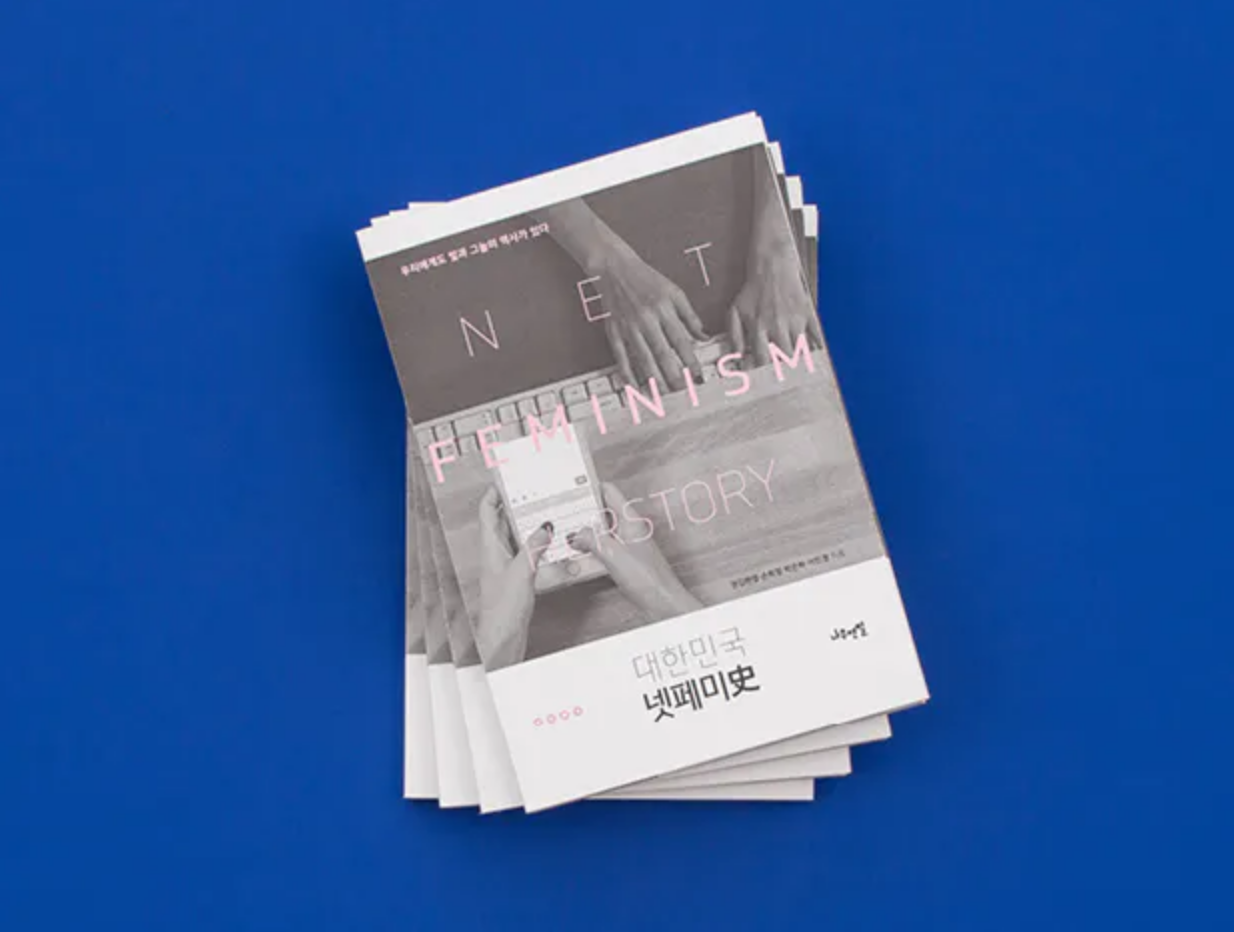
book cover, image from https://www.tumblbug.com/netfeminism
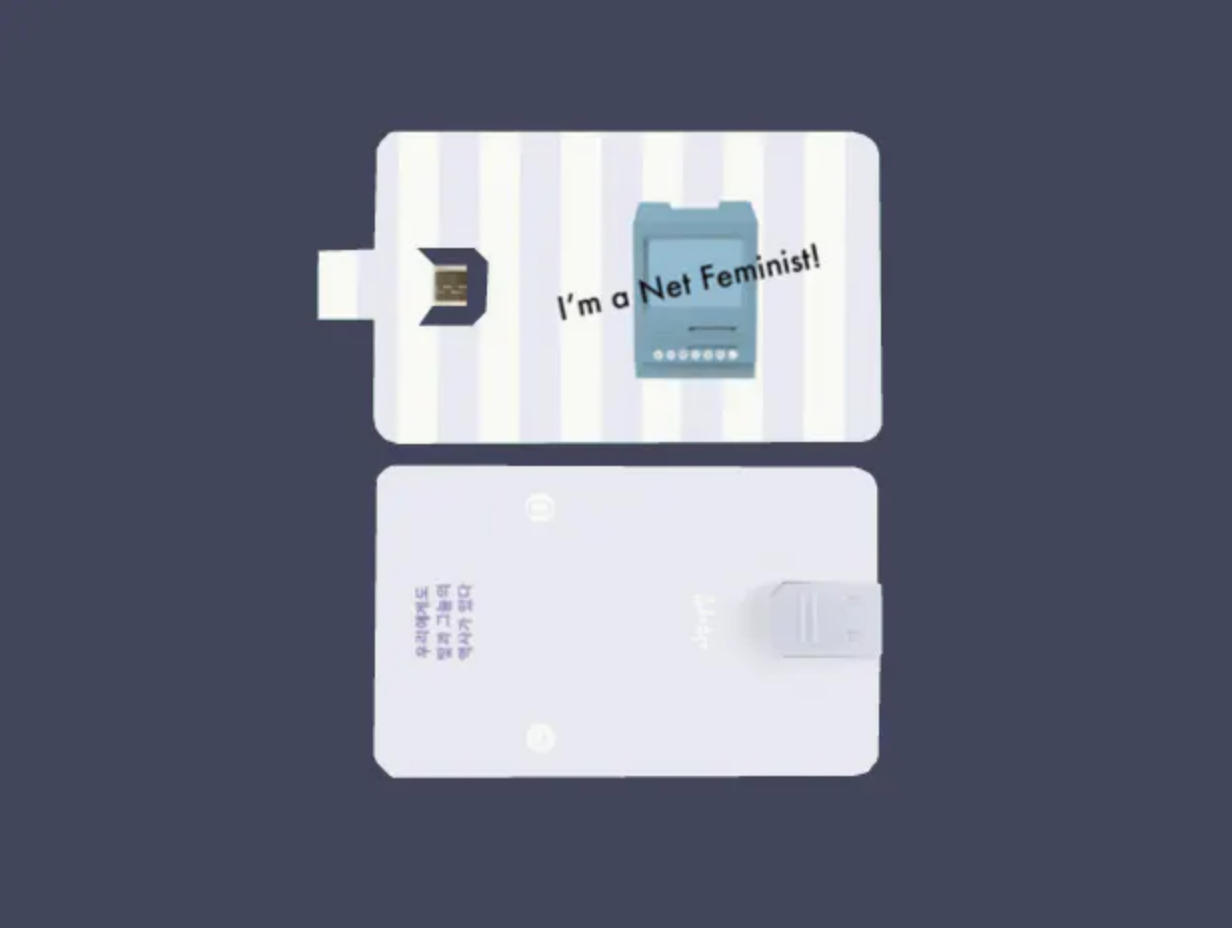
wallet-sized USB drive, image from https://www.tumblbug.com/netfeminism

USB drive in a phone, image from https://www.tumblbug.com/netfeminism

USB drive in a Macbook, image from https://www.tumblbug.com/netfeminism
2016년 '넷페미'들의 활동은 한국 사회에 가장 중요한 이슈 중 하나였습니다. 강남역 살인사건 이후의 포스트잇 추모 물결, 여성 혐오을 미러링한 메갈리아의 활동, 낙태법에 맞서 '나의 자궁은 나의 것'을 당당하게 외친 검은 시위, 'OO 내 성폭력' 해시태그 운동을 통한 일상의 성폭력 폭로 등은 모두 인터넷 페미니스트들의 똑딱똑딱 자판질에서 태동되었지요. […] 이 책은 넷페미의 입으로 정리한 넷페미의 역사입니다. 간략한 책이지만, 이제까지 수많은 넷페미들이 어떻게 말하고 설치고 생각해왔는지가 이 책에 담겨 있지요.
In 2016, Netfemi activities were one of the most important issues in Korean society. The wave after Gangnam Station murder, Megalia’s activity mirrored the hate of women, protests that shouted “My womb is mine” against abortion law, and exposed daily sexual violence through hashtag movements. This was all born from the clicking of the keyboards of Internet feminists. […] This book is the history of Netfemi, organized by Netfemi’s mouth. It’s a brief book, but it contains how many Netfemies have been talking, installing, and thinking.
2016, 권김현영 [Kwon Hyun-young], 손희정 [Hee-jung Son], 박은하 [Eunha Park], and 이민경 [Lee Min-kyung] (Seoul: Wooden Pencil, 2016); excerpt from Wooden Pencil; referred by Soyoung Chong
https://www.tumblbug.com/netfeminism https://femiwiki.com/w/%EB%8C%80%ED%95%9C%EB%AF%BC%EA%B5%AD_%EB%84%B7%ED%8E%98%EB%AF%B8%EC%82%AC(%EC%B1%85)
South Korea
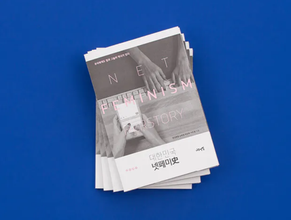
book cover, image from https://www.tumblbug.com/netfeminism

wallet-sized USB drive, image from https://www.tumblbug.com/netfeminism

USB drive in a phone, image from https://www.tumblbug.com/netfeminism

USB drive in a Macbook, image from https://www.tumblbug.com/netfeminism
(551)
2016
Black Cyberfeminism: Intersectionality, Institutions and Digital Sociology
Tressie McMillan Cottom
Black cyberfeminist theory bridges gaps in current theory and method in Internet Studies, as well as various other disciplinary modes of studying the Internet. Status groups are constantly morphing but the power relationships that define status groups are remarkably stable. Focusing on categorical descriptions to the exclusion of process conflates compositional change for structural change. […] If the aim is to understand the nature of contemporary inequality, there is value in discerning the life chances of poor white women in Western nations distinctly from those of poor second generation Congolese immigrants in a Western nation. Algorithmic stratification would account for the intersections of history and biography that define integrative intersectionality under contemporary structural conditions. As privatization complicates datafication, neo-liberalism weakens social reforms, and capital further inserts its way into how we live our daily lives on the Internet, intersectionality is critical to Internet studies and social science. Algorithmic stratification’s focus on process, both online and off, across intersecting power relations is a way to move the study of contemporary inequalities forward.
2016, Tressie McMillan Cottom, in Digital Societies, eds. Jessie Daniels, Karen Gregory, and Tressie McMillan Cottom (Bristol: Policy Press, 2016); excerpt from abstract, https://ssrn.com/abstract=2747621
https://www.are.na/block/8078595
Black cyberfeminist theory bridges gaps in current theory and method in Internet Studies, as well as various other disciplinary modes of studying the Internet. Status groups are constantly morphing but the power relationships that define status groups are remarkably stable. Focusing on categorical descriptions to the exclusion of process conflates compositional change for structural change. […] If the aim is to understand the nature of contemporary inequality, there is value in discerning the life chances of poor white women in Western nations distinctly from those of poor second generation Congolese immigrants in a Western nation. Algorithmic stratification would account for the intersections of history and biography that define integrative intersectionality under contemporary structural conditions. As privatization complicates datafication, neo-liberalism weakens social reforms, and capital further inserts its way into how we live our daily lives on the Internet, intersectionality is critical to Internet studies and social science. Algorithmic stratification’s focus on process, both online and off, across intersecting power relations is a way to move the study of contemporary inequalities forward.
2016, Tressie McMillan Cottom, in Digital Societies, eds. Jessie Daniels, Karen Gregory, and Tressie McMillan Cottom (Bristol: Policy Press, 2016); excerpt from abstract, https://ssrn.com/abstract=2747621
https://www.are.na/block/8078595
(552)
2016
페미당당 [Femidangdang]
Soyoung Chong, Miseup Sim, Jiann Woo, Yeji Kim, Yewon Moon, Yeyoon Seo, Hwayong Shin, Cheonseok Oh, Eunhoo Cho, Hojeong Hyun, Seungmin Hong, Mina Kim
페미(femi): Feminists
당당(dangdang): Pride, to be proud
당(dang) is a suffix meaning ‘political party
Femidangdang is an activist organization (or more literally, a “party of proud feminists”) aiming to widen the scope of feminist/womens’ representation within South Korean politics. Starting with the Mirror Performance amidst the Gangnam station homicide in 2016, Femidangdang has initiated various activities and events on the border of activism, cultural movement and performative art.
2016, Soyoung Chong, Miseup Sim, Jiann Woo, Yeji Kim, Yewon Moon, Yeyoon Seo, Hwayong Shin, Cheonseok Oh, Eunhoo Cho, Hojeong Hyun, Seungmin Hong, and Mina Kim, http://www.femidangdang.com; excerpt from Soyoung Chong, email to Mindy Seu, July 20, 2020; referred by Soyoung Chong
https://twitter.com/femidangdang https://www.facebook.com/femidangdang/
South Korea
페미(femi): Feminists
당당(dangdang): Pride, to be proud
당(dang) is a suffix meaning ‘political party
Femidangdang is an activist organization (or more literally, a “party of proud feminists”) aiming to widen the scope of feminist/womens’ representation within South Korean politics. Starting with the Mirror Performance amidst the Gangnam station homicide in 2016, Femidangdang has initiated various activities and events on the border of activism, cultural movement and performative art.
2016, Soyoung Chong, Miseup Sim, Jiann Woo, Yeji Kim, Yewon Moon, Yeyoon Seo, Hwayong Shin, Cheonseok Oh, Eunhoo Cho, Hojeong Hyun, Seungmin Hong, and Mina Kim, http://www.femidangdang.com; excerpt from Soyoung Chong, email to Mindy Seu, July 20, 2020; referred by Soyoung Chong
https://twitter.com/femidangdang https://www.facebook.com/femidangdang/
South Korea
(553)
2016
In Conversation: Shu Lea Cheang and Victoria Sin
Shu Lea Cheang, Victoria Sin
As the [science] fiction goes…
The electric sheep are set free range;
the obsolete humanoids are dumped on the e-trashscape;
the coin locker baby takes a teacup ride;
the human bodies held hostage set for the BioNet startup;
the erythrocytes programmed learn to compute orgasm data;
the Net composted bursts fresh sprouts;
the seeds gone underground leaving farmlands barren;
agliomania charges the air;
garlic is the preferred stinky currency;
liquid future packaged are made to order;
hoodies patched are made to network;
Paris declares AIDS free by year 2015;
the HIV virus mutated prompts sexual high;
enter the BioNet
I hear the blood running.
2016, Shu Lea Cheang, interview by Victoria Sin, Auto Italia South East, August 1, 2016, https://autoitaliasoutheast.org/blog/shu-lea-cheang-in-conversation-with-victoria-sin/
As the [science] fiction goes…
The electric sheep are set free range;
the obsolete humanoids are dumped on the e-trashscape;
the coin locker baby takes a teacup ride;
the human bodies held hostage set for the BioNet startup;
the erythrocytes programmed learn to compute orgasm data;
the Net composted bursts fresh sprouts;
the seeds gone underground leaving farmlands barren;
agliomania charges the air;
garlic is the preferred stinky currency;
liquid future packaged are made to order;
hoodies patched are made to network;
Paris declares AIDS free by year 2015;
the HIV virus mutated prompts sexual high;
enter the BioNet
I hear the blood running.
2016, Shu Lea Cheang, interview by Victoria Sin, Auto Italia South East, August 1, 2016, https://autoitaliasoutheast.org/blog/shu-lea-cheang-in-conversation-with-victoria-sin/
(554)
2016
Gesturing Towards “Anti-Colonial Hacking” and its Infrastructure
Sophie Toupin
“In the 1980s, freedom fighters and hackers from South Africa built an autonomous encrypted communication network that allowed activists infiltrated on the ground to communicate with the senior leadership of the African National Congress (ANC) based in Lusaka, Zambia via London. The encrypted communication network was set up as part of Operation Vula to attempt to launch a people's war and ultimately liberate a people's from apartheid. This article speaks to the history of technology in its attempts to further document and elucidate the encrypted communication network. To accomplish this, it draws both on previously available sources and also personal accounts obtained through interviews with some of the core individuals involved in the network's functioning. It also aims at expanding our understanding of highly intentional, politically-motivated practices of hacking, and the socio-technical infrastructures needed for such practices to exist.” —Sophie Toupin
“In the 1980s, freedom fighters and hackers from South Africa built an autonomous encrypted communication network that allowed activists infiltrated on the ground to communicate with the senior leadership of the African National Congress (ANC) based in Lusaka, Zambia via London. The encrypted communication network was set up as part of Operation Vula to attempt to launch a people's war and ultimately liberate a people's from apartheid. This article speaks to the history of technology in its attempts to further document and elucidate the encrypted communication network. To accomplish this, it draws both on previously available sources and also personal accounts obtained through interviews with some of the core individuals involved in the network's functioning. It also aims at expanding our understanding of highly intentional, politically-motivated practices of hacking, and the socio-technical infrastructures needed for such practices to exist.” —Sophie Toupin
(555)
2016
A Brief (Media) History of the Indigenous Future
Jason Edward Lewis
I felt that Indigenous new media artists were making work [that] was as strong as that found on the international scene. […] Yet, now I find myself appreciating that separation. It is a feature, not a bug. I can see how, if it had been more integrated, Indigenous practice would most likely have been a minority practice within a larger, existing narrative, a few lonely examples within an existing canon—subaltern—subject to established theory.
The way [indigenous media art] has unfolded over the last two decades, though, is that we have developed our own critics, our own critical frameworks, our own antecedents, our own canon […] Thus, we have not been preoccupied with getting “added on” or “brought in” to the narrative, to the canon, to the theory. This is in itself an exercise in imagining an alternative, Indigenous, future. It has allowed us to center our practice in the cultural discourse and practices that generate it, and create a distinct future where we are not dependent on the gatekeepers to open the gates—not required, even, to storm those gates, or go around them. It has allowed us to create a distinct future in which we strike out on our own, into new territory.
2016, Jason Edward Lewis, PUBLIC: Art | Culture | Ideas 27, no. 54 (January 2016): pp. 36–49; excerpt p. 43
https://www.are.na/block/8147859
I felt that Indigenous new media artists were making work [that] was as strong as that found on the international scene. […] Yet, now I find myself appreciating that separation. It is a feature, not a bug. I can see how, if it had been more integrated, Indigenous practice would most likely have been a minority practice within a larger, existing narrative, a few lonely examples within an existing canon—subaltern—subject to established theory.
The way [indigenous media art] has unfolded over the last two decades, though, is that we have developed our own critics, our own critical frameworks, our own antecedents, our own canon […] Thus, we have not been preoccupied with getting “added on” or “brought in” to the narrative, to the canon, to the theory. This is in itself an exercise in imagining an alternative, Indigenous, future. It has allowed us to center our practice in the cultural discourse and practices that generate it, and create a distinct future where we are not dependent on the gatekeepers to open the gates—not required, even, to storm those gates, or go around them. It has allowed us to create a distinct future in which we strike out on our own, into new territory.
2016, Jason Edward Lewis, PUBLIC: Art | Culture | Ideas 27, no. 54 (January 2016): pp. 36–49; excerpt p. 43
https://www.are.na/block/8147859
(556)
2016
Stop following me/follow me on
Devin Kenny
“This assemblage/light installation features maps made by the Surveillance Camera [page "Sandy Speaks: A Chatbot That Talks Prison Statistics & The Failure Of Surveillance" not found] Players of Security cameras in Williamsburg Brooklyn. It also features color slides, gels, 3D printed trash and other miscellany.” —Devin Kenny
referred by Legacy Russell
https://www.devinkenny.info/Stop-following-me-Follow-me-on https://artistsspace.org/exhibitions/coop-fund-amalle-dublon

image from https://www.devinkenny.info/Stop-following-me-Follow-me-on
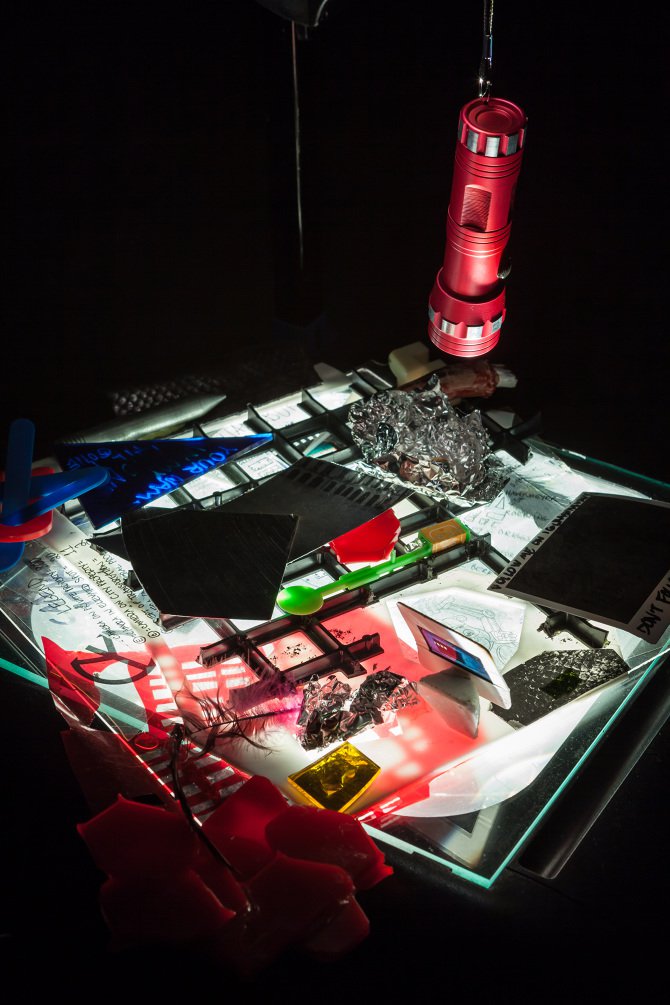
image from https://www.devinkenny.info/Stop-following-me-Follow-me-on
“This assemblage/light installation features maps made by the Surveillance Camera [page "Sandy Speaks: A Chatbot That Talks Prison Statistics & The Failure Of Surveillance" not found] Players of Security cameras in Williamsburg Brooklyn. It also features color slides, gels, 3D printed trash and other miscellany.” —Devin Kenny
referred by Legacy Russell
https://www.devinkenny.info/Stop-following-me-Follow-me-on https://artistsspace.org/exhibitions/coop-fund-amalle-dublon
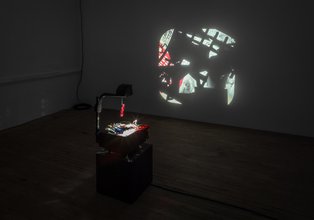
image from https://www.devinkenny.info/Stop-following-me-Follow-me-on
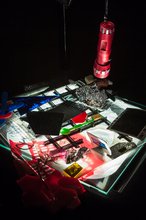
image from https://www.devinkenny.info/Stop-following-me-Follow-me-on
(557)
2016
A Tender Hex for the Anthropocene
VNS Matrix
machines must be perverted, re-instrumentalised,
redeployed in the service of the birds
unking the castles, crown the swans
fly on our feet
towards a new nature
Terminators, unking Big Daddy Mainframe! (x)
The modern Cunt (x)
extends secret malignancies towards sameness
buries the virus deep
in the zero
Dentata still has currency
forever bitchcoin (x)
my system hovers, is nervous
brilliant neurons swarming
caught in the static blitz of carrier drone
with an (ec)static rush
a direct line to the matrix
(the dirty familiar)
2016, VNS Matrix, https://vnsmatrix.net/projects/a-tender-hex-for-the-anthropocene; referred by Virginia Barratt and Francesca da Rimini (x)
machines must be perverted, re-instrumentalised,
redeployed in the service of the birds
unking the castles, crown the swans
fly on our feet
towards a new nature
Terminators, unking Big Daddy Mainframe! (x)
The modern Cunt (x)
extends secret malignancies towards sameness
buries the virus deep
in the zero
Dentata still has currency
forever bitchcoin (x)
my system hovers, is nervous
brilliant neurons swarming
caught in the static blitz of carrier drone
with an (ec)static rush
a direct line to the matrix
(the dirty familiar)
2016, VNS Matrix, https://vnsmatrix.net/projects/a-tender-hex-for-the-anthropocene; referred by Virginia Barratt and Francesca da Rimini (x)
(558)
2016
Trans*Plant
Quimera Rosa
TransPlant is a transdisciplinary project, initiated by Quimera Rosa in 2016, that utilizes living systems and is based on self-experimentation: it is a process that involves a “human > plant” transition in various formats. […] The greatest problem with the dominant ecology is that it is based on the notion of “nature,” a notion created historically to separate humanity from the rest of the universe and establish a colonial relationship. The binomial culture / nature structures an almost infinite list of other binomials found in modern Western thought: man / woman, white / non-white, straight / queer, science / witchcraft, adult / child, normal / abnormal … The second term of each binomial is associated with nature and is therefore subdued to the same regime of violence. Through heterotrophy carried out to its maximum, necropolitics is constituted so that it literally “consumes” everything on this planet. “Protecting nature” seems to be a bad idea … It is strange that one has come to accept that an individual, delimited by the skin, constitutes a living being, but the planet as a whole doesn’t.
2016, Quimera Rosa, https://quimerarosa.net/transplant/; referred by Klau Chinche (Klau Kinky)
TransPlant is a transdisciplinary project, initiated by Quimera Rosa in 2016, that utilizes living systems and is based on self-experimentation: it is a process that involves a “human > plant” transition in various formats. […] The greatest problem with the dominant ecology is that it is based on the notion of “nature,” a notion created historically to separate humanity from the rest of the universe and establish a colonial relationship. The binomial culture / nature structures an almost infinite list of other binomials found in modern Western thought: man / woman, white / non-white, straight / queer, science / witchcraft, adult / child, normal / abnormal … The second term of each binomial is associated with nature and is therefore subdued to the same regime of violence. Through heterotrophy carried out to its maximum, necropolitics is constituted so that it literally “consumes” everything on this planet. “Protecting nature” seems to be a bad idea … It is strange that one has come to accept that an individual, delimited by the skin, constitutes a living being, but the planet as a whole doesn’t.
2016, Quimera Rosa, https://quimerarosa.net/transplant/; referred by Klau Chinche (Klau Kinky)
(559)
2016
Cyborg-Brujas: BioHacking y Laboratorios caseros [Cyborg-Women: BioHacking and Home Labs]
Pandemia Lab
La institución médica ostenta siniestras prohibitivas tecnologías de diagnóstico, metodologías de diagnosis patriarcales, conservadoras y ocultistas en lectura y tratamientos. En el caso de la ginecología llega a niveles inquisitorios, paternalistas y actitudes fascistas.
Para hacerme un jodido cultivo de cándida o gardenella, por nombrar algunos, además de tragarme la tortuosa y anodina sala de espera de un CAP, o ser obligada a responder (ó vomitar en arcadas) buro-cuestionarios o formularios estadísticos de rigor que representan una especie de juicio a jurado popular (que no se corta un pelo!) en condenar tus prácticas, capacidades y decisiones. Cotillear con reflujo de moralinas morbosas rascando datos sobre tu promiscuidad, uso de drogas, orientación sexual y rituales de higiene, quizás relacionados a que eres okupa? sólo por las pintas…!! y bueno para que mencionar la palabra aborto, es como invocar brujería! un anacronismo político!
The medical institution boasts sinisterly prohibitive diagnostic technologies, patriarchal, conservative and occult diagnostic methodologies in assessment and treatment. In the case of gynecology, it reaches inquisitive, paternalistic and fascist attitudes.
To make a fucking culture of candida or gardenella, to name a few, in addition to swallowing the tortuous and anodyne waiting room of a CAP, or being forced to answer (or vomit in gags) bureau-questionnaires or statistical forms of rigor that represent a kind of popular jury trial (which does not cut a hair!) in condemning your practices, abilities and decisions. Gossip with the ebb of morbid morals scratching data on your promiscuity, drug use, sexual orientation and hygiene rituals, perhaps related to being a squatter? just for the pints…!! Well, why mentioning the word abortion is like invoking witchcraft! a political anachronism!
2016, Pandemia Lab (translation of GynePunk (399) Manifesto), LaGat4yLaUrn4, July 25, 2016, https://lagat4ylaurn4.wordpress.com/2016/07/25/cyborg-brujas-biohacking-y-laboratorios-caseros/; referred by Klau Chinche (Klau Kinky)
La institución médica ostenta siniestras prohibitivas tecnologías de diagnóstico, metodologías de diagnosis patriarcales, conservadoras y ocultistas en lectura y tratamientos. En el caso de la ginecología llega a niveles inquisitorios, paternalistas y actitudes fascistas.
Para hacerme un jodido cultivo de cándida o gardenella, por nombrar algunos, además de tragarme la tortuosa y anodina sala de espera de un CAP, o ser obligada a responder (ó vomitar en arcadas) buro-cuestionarios o formularios estadísticos de rigor que representan una especie de juicio a jurado popular (que no se corta un pelo!) en condenar tus prácticas, capacidades y decisiones. Cotillear con reflujo de moralinas morbosas rascando datos sobre tu promiscuidad, uso de drogas, orientación sexual y rituales de higiene, quizás relacionados a que eres okupa? sólo por las pintas…!! y bueno para que mencionar la palabra aborto, es como invocar brujería! un anacronismo político!
The medical institution boasts sinisterly prohibitive diagnostic technologies, patriarchal, conservative and occult diagnostic methodologies in assessment and treatment. In the case of gynecology, it reaches inquisitive, paternalistic and fascist attitudes.
To make a fucking culture of candida or gardenella, to name a few, in addition to swallowing the tortuous and anodyne waiting room of a CAP, or being forced to answer (or vomit in gags) bureau-questionnaires or statistical forms of rigor that represent a kind of popular jury trial (which does not cut a hair!) in condemning your practices, abilities and decisions. Gossip with the ebb of morbid morals scratching data on your promiscuity, drug use, sexual orientation and hygiene rituals, perhaps related to being a squatter? just for the pints…!! Well, why mentioning the word abortion is like invoking witchcraft! a political anachronism!
2016, Pandemia Lab (translation of GynePunk (399) Manifesto), LaGat4yLaUrn4, July 25, 2016, https://lagat4ylaurn4.wordpress.com/2016/07/25/cyborg-brujas-biohacking-y-laboratorios-caseros/; referred by Klau Chinche (Klau Kinky)
(560)
2016–
2017
Prototyp_ome
Un encuentro para compartir y recorrer la deriva de estos 2 años de este un proyecto transdisciplinar, propositivo e inusual en torno diagnosis y tratamiento low cost de enfermedades desde una vision feminista: artesania celular, tejidos dinamicos, tacticas combinatorias, reacciones, interferencias, amplificaciones, sintesis e hibridaciones biopoliticas.
A meeting to share and go through the drift of these 2 years of this a transdisciplinary, purposeful and unusual project around diagnosis and low cost treatment of diseases from a feminist perspective: cellular crafts, dynamic tissues, combinatorial tactics, reactions, interferences, amplifications, synthesis and biopolitical hybridizations.
2016, https://prototypome.gridspinoza.net/index.php/Prototypo_me; referred by Klau Chinche (Klau Kinky)
https://prototypome.gridspinoza.net/index.php/RESIDENCIAS_II,_III_y_IV
Un encuentro para compartir y recorrer la deriva de estos 2 años de este un proyecto transdisciplinar, propositivo e inusual en torno diagnosis y tratamiento low cost de enfermedades desde una vision feminista: artesania celular, tejidos dinamicos, tacticas combinatorias, reacciones, interferencias, amplificaciones, sintesis e hibridaciones biopoliticas.
A meeting to share and go through the drift of these 2 years of this a transdisciplinary, purposeful and unusual project around diagnosis and low cost treatment of diseases from a feminist perspective: cellular crafts, dynamic tissues, combinatorial tactics, reactions, interferences, amplifications, synthesis and biopolitical hybridizations.
2016, https://prototypome.gridspinoza.net/index.php/Prototypo_me; referred by Klau Chinche (Klau Kinky)
https://prototypome.gridspinoza.net/index.php/RESIDENCIAS_II,_III_y_IV
(561)
2016
Hack The Earth: simBIOtica
Calafou
Asociación íntima de organismos de especies diferentes para beneficiarse mutuamente en su desarrollo vital. Relación de ayuda o apoyo mutuo que se establece entre dos personas o entidades, especialmente cuando trabajan o realizan algo en común. Condición o estado de vivir juntos del verbo symbion “vivi juntos convivir”. En este término simbiosis participa syn “junto con en compañia de juntos”, el verbo bioó ‘vivir’ o el nombre de bios “vida” mas el sufijo sis, que indica “proceso”, por lo tanto puede definirse textualmente como: “el hecho de vivir juntos o convivir.”
Intimate association of organisms of different species to benefit each other in their vital development. A relationship of mutual help or support that is established between two people or entities, especially when they work or do something in common. Condition or state of living together from the symbion verb “I lived together to live together.” In this term symbiosis the prefix sym is “together with in the company of together,” the verb bio “to live” or the name of bios’ “life,” plus the suffix sis, which indicates “process,” therefore it can be defined textually as: “the fact of living together or living together.”
2016, https://wiki.calafou.org/index.php/HackTheEarth:simBIOtica; referred by Klau Chinche (Klau Kinky)
Asociación íntima de organismos de especies diferentes para beneficiarse mutuamente en su desarrollo vital. Relación de ayuda o apoyo mutuo que se establece entre dos personas o entidades, especialmente cuando trabajan o realizan algo en común. Condición o estado de vivir juntos del verbo symbion “vivi juntos convivir”. En este término simbiosis participa syn “junto con en compañia de juntos”, el verbo bioó ‘vivir’ o el nombre de bios “vida” mas el sufijo sis, que indica “proceso”, por lo tanto puede definirse textualmente como: “el hecho de vivir juntos o convivir.”
Intimate association of organisms of different species to benefit each other in their vital development. A relationship of mutual help or support that is established between two people or entities, especially when they work or do something in common. Condition or state of living together from the symbion verb “I lived together to live together.” In this term symbiosis the prefix sym is “together with in the company of together,” the verb bio “to live” or the name of bios’ “life,” plus the suffix sis, which indicates “process,” therefore it can be defined textually as: “the fact of living together or living together.”
2016, https://wiki.calafou.org/index.php/HackTheEarth:simBIOtica; referred by Klau Chinche (Klau Kinky)
(562)
2016
Kéfir
Kéfir es una cooperativa feminista de tecnologías libres para activistas, defensoras de derechos humanos, periodistas, organizaciones sociales, colectivos, artistas … Apuesta por crear juntas vecindades digitales comunitarias donde podamos sentirnos en confianza, expresarnos y accionar sin miedo (ง’-‘︠)ง
Fermentaciones en constante transformación, cultivo y cuidado cotidiano basado en saberes compartidos. Así concebimos este proyecto: un ecosistema comunitario y hogareño donde se comparte, narra y acompaña. La cooperativa está formado por activistas inmersxs en luchas sociales de software y cultura libre, feminismos, economía social crítica y movimientos de autogestión. Nuestras trayectorias nos permiten entender las necesidades e inquietudes de los grupos a los que vamos dirigidos.”
Kéfir is a libre/free tech feminist co-op for activists, human right defenders, journalists, civil society organizations, collectives, artists … We want to help build safe and free (as in freedom) spaces on the internet. We need to create together digital neighborhoods where we can trust each other, express and operate/trigger without fear (ง’-‘︠)ง
Fermenting in constant transformation and day-to-day nurturing based on shared knowledge and narratives. That’s how we conceived this project: a community and cozy ecosystem in which we transmit, create and walk together. Our cooperative is made up of activists immersed in social movements related with libre software and culture, feminisms and critical social economy. Our background helps us understand the needs of the groups we focus on.
2016, https://kefir.red/; referred by Klau Chinche (Klau Kinky)
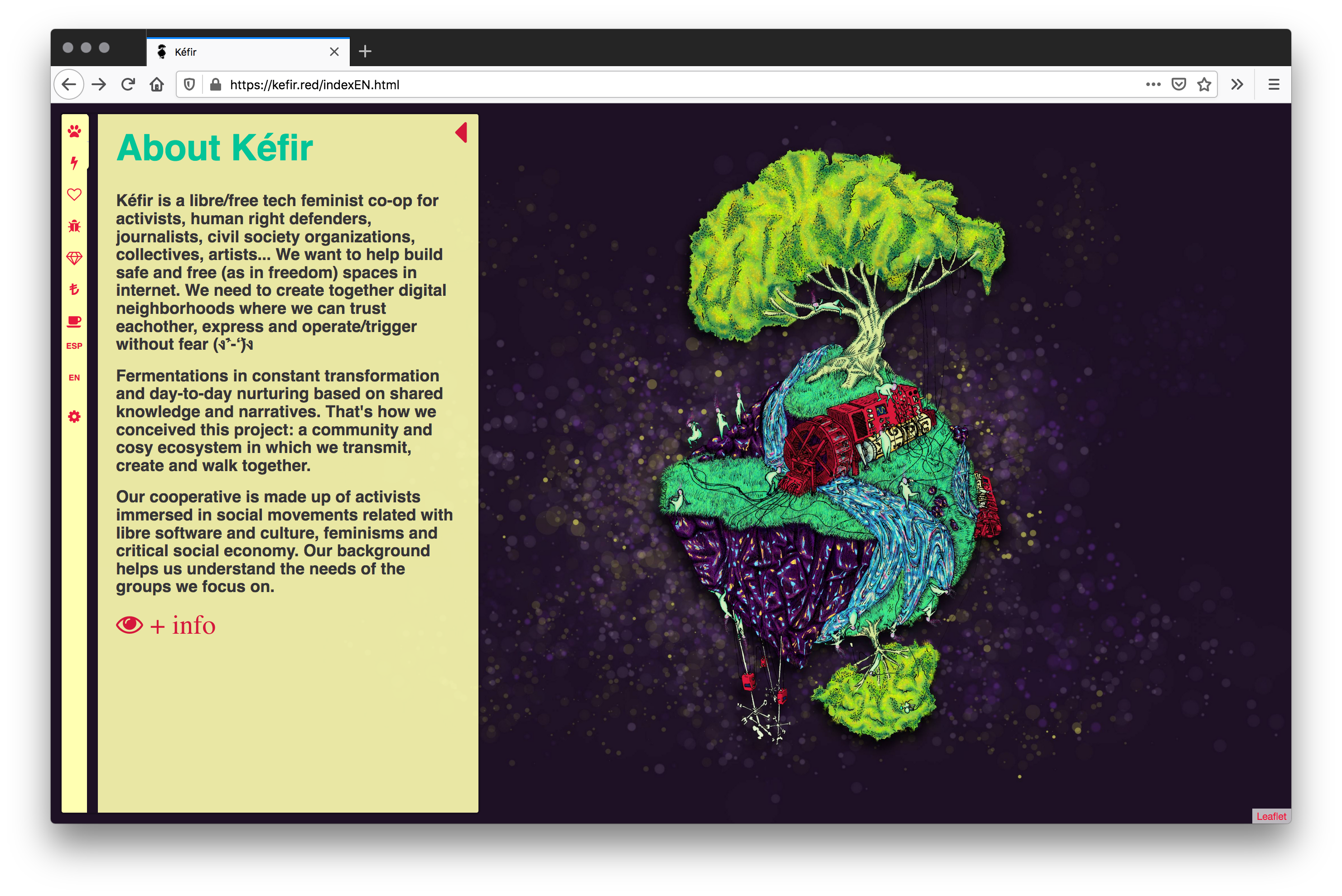
Screenshot, 2020, Firefox v76.0.1 on Mac OS 10.13.3; https://kefir.red/
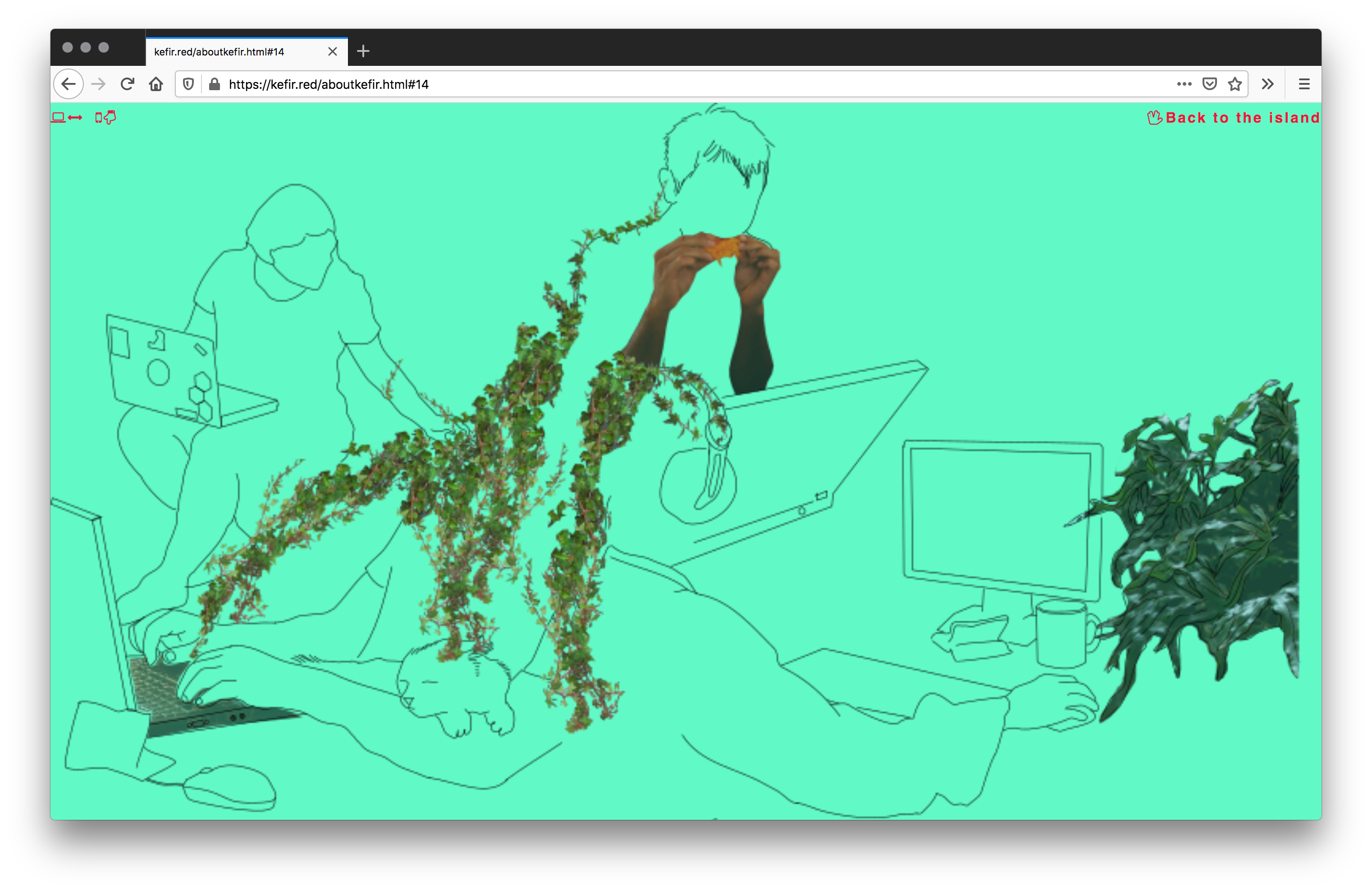
Screenshot, 2020, Firefox v76.0.1 on Mac OS 10.13.3; https://kefir.red/aboutkefir.html#14
Kéfir es una cooperativa feminista de tecnologías libres para activistas, defensoras de derechos humanos, periodistas, organizaciones sociales, colectivos, artistas … Apuesta por crear juntas vecindades digitales comunitarias donde podamos sentirnos en confianza, expresarnos y accionar sin miedo (ง’-‘︠)ง
Fermentaciones en constante transformación, cultivo y cuidado cotidiano basado en saberes compartidos. Así concebimos este proyecto: un ecosistema comunitario y hogareño donde se comparte, narra y acompaña. La cooperativa está formado por activistas inmersxs en luchas sociales de software y cultura libre, feminismos, economía social crítica y movimientos de autogestión. Nuestras trayectorias nos permiten entender las necesidades e inquietudes de los grupos a los que vamos dirigidos.”
Kéfir is a libre/free tech feminist co-op for activists, human right defenders, journalists, civil society organizations, collectives, artists … We want to help build safe and free (as in freedom) spaces on the internet. We need to create together digital neighborhoods where we can trust each other, express and operate/trigger without fear (ง’-‘︠)ง
Fermenting in constant transformation and day-to-day nurturing based on shared knowledge and narratives. That’s how we conceived this project: a community and cozy ecosystem in which we transmit, create and walk together. Our cooperative is made up of activists immersed in social movements related with libre software and culture, feminisms and critical social economy. Our background helps us understand the needs of the groups we focus on.
2016, https://kefir.red/; referred by Klau Chinche (Klau Kinky)
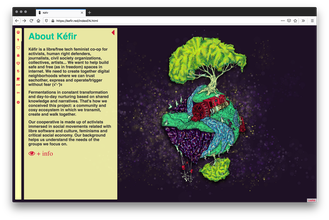
Screenshot, 2020, Firefox v76.0.1 on Mac OS 10.13.3; https://kefir.red/
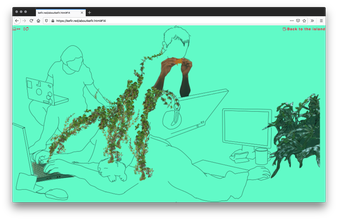
Screenshot, 2020, Firefox v76.0.1 on Mac OS 10.13.3; https://kefir.red/aboutkefir.html#14
“In The Social Life of DNA, Alondra Nelson takes us on an unprecedented journey into how the double helix has wound its way into the heart of the most urgent contemporary social issues around race. Weaving together keenly observed interactions with root-seekers alongside historical details and revealing personal narrative, she shows that genetic genealogy is a new tool for addressing old and enduring issues. Nelson explains how these cutting-edge DNA-based techniques are being used in myriad ways, including grappling with the unfinished business of slavery: to foster reconciliation, to establish ties with African ancestral homelands, to rethink and sometimes alter citizenship, and to make legal claims for slavery reparations specifically based on ancestry.”
referred by Refresh Tech
“In The Social Life of DNA, Alondra Nelson takes us on an unprecedented journey into how the double helix has wound its way into the heart of the most urgent contemporary social issues around race. Weaving together keenly observed interactions with root-seekers alongside historical details and revealing personal narrative, she shows that genetic genealogy is a new tool for addressing old and enduring issues. Nelson explains how these cutting-edge DNA-based techniques are being used in myriad ways, including grappling with the unfinished business of slavery: to foster reconciliation, to establish ties with African ancestral homelands, to rethink and sometimes alter citizenship, and to make legal claims for slavery reparations specifically based on ancestry.”
referred by Refresh Tech
(564)
2016
rEvolution (revolução)
Beatriz Albuquerque
In this project rEvolution, Beatriz Albuquerque creates a manifesto to emancipate everyone from the oppression that we live daily. One of the medium chosen to convey the message is through in person and virtual performances (streets, SL [Second Life], online game demonstrations) and daily newspapers advertising for a revolution and to join the fight to achieve acceptance and equality of race, gender, religion, and sexual orientation.
2016, Beatriz Albuquerque, http://www.beatrizalbuquerque.com/index.php?selected=projects&year=2016; submitted by Beatriz Albuquerque
https://www.youtube.com/watch?v=qLTjOWnJ6b0
New York, United States
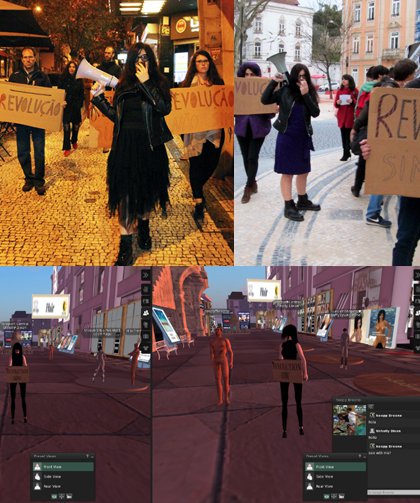
image from pop-up on http://www.beatrizalbuquerque.com/index.php?selected=projects&year=2016, pulled March 15, 2021

00:07 still from https://www.youtube.com/watch?v=qLTjOWnJ6b0
In this project rEvolution, Beatriz Albuquerque creates a manifesto to emancipate everyone from the oppression that we live daily. One of the medium chosen to convey the message is through in person and virtual performances (streets, SL [Second Life], online game demonstrations) and daily newspapers advertising for a revolution and to join the fight to achieve acceptance and equality of race, gender, religion, and sexual orientation.
2016, Beatriz Albuquerque, http://www.beatrizalbuquerque.com/index.php?selected=projects&year=2016; submitted by Beatriz Albuquerque
https://www.youtube.com/watch?v=qLTjOWnJ6b0
New York, United States
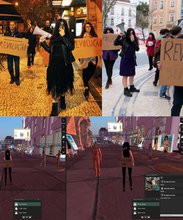
image from pop-up on http://www.beatrizalbuquerque.com/index.php?selected=projects&year=2016, pulled March 15, 2021
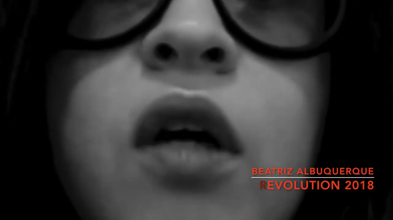
00:07 still from https://www.youtube.com/watch?v=qLTjOWnJ6b0
(565)
2016
Nathalie Magnan
Bruce Sterling
Cyberfeminist belongs to the ages.
Many reports on Facebook confirm that Nathalie Magnan passed away yesterday, Sat 15 October 2016. Some nettimers knew her, a few more probably know of her, but most may have at most seen her name. What follows is a brief effort to cobble together a short memorial […]
Nathalie was an early and energetic participant in many of the milieus that gave rise to the nettime project, and she generously brought perspectives and connections that this project has never done very well with—feminism and France, to name two. […] Much more significantly, she was deeply involved in a range of efforts surrounding cyberfeminism. A few traces include the FACES mailing list, the OBN (Old Boys Network), the Very Cyberfeminist International, and Zelig.
Like many people involved in nettime early on, Nathalie was someone who, as the cultural arbiters like to say now, “worked at the intersection of.” […] But those geometrical metaphors never quite capture the valences of the work of someone like Nathalie. […] Nathalie’s translation of the very American thinker Donna Haraway into French (Manifeste cyborg et autres essais: sciences, fictions, féminismes) goes against that grain on many levels.
2016, Bruce Sterling, Wired, October 28, 2016, https://www.wired.com/beyond-the-beyond/2016/10/nathalie-magnan/; submitted by Fil
https://archive.org/details/@de_la_mule_au_web
Cyberfeminist belongs to the ages.
Many reports on Facebook confirm that Nathalie Magnan passed away yesterday, Sat 15 October 2016. Some nettimers knew her, a few more probably know of her, but most may have at most seen her name. What follows is a brief effort to cobble together a short memorial […]
Nathalie was an early and energetic participant in many of the milieus that gave rise to the nettime project, and she generously brought perspectives and connections that this project has never done very well with—feminism and France, to name two. […] Much more significantly, she was deeply involved in a range of efforts surrounding cyberfeminism. A few traces include the FACES mailing list, the OBN (Old Boys Network), the Very Cyberfeminist International, and Zelig.
Like many people involved in nettime early on, Nathalie was someone who, as the cultural arbiters like to say now, “worked at the intersection of.” […] But those geometrical metaphors never quite capture the valences of the work of someone like Nathalie. […] Nathalie’s translation of the very American thinker Donna Haraway into French (Manifeste cyborg et autres essais: sciences, fictions, féminismes) goes against that grain on many levels.
2016, Bruce Sterling, Wired, October 28, 2016, https://www.wired.com/beyond-the-beyond/2016/10/nathalie-magnan/; submitted by Fil
https://archive.org/details/@de_la_mule_au_web
(566)
2016
Afronautic Research Lab
Camille Turner
The Afronautic Research Lab consists of a “futuristic reading room” as [Turner] describes it. “The public is invited to come into the room and engage with material which consist of newspapers from the 18th century and also books that look at the evidence of slavery and its connection to Newfoundland.” Turner really focused her exhibition on the 19 slave ships that were built on the island. […] To create her exhibition, Turner mainly used the Internet and the website slavevoyages.org in particular as official sources are lacking on the subject. She also drew her work from a Harvard University database which compiles records of slaving expeditions between 1514 and 1866. As she explains, she found a lot of documents on the expeditions, but what was missing were details about the trafficked people and their lives. […] The artist now hopes her exhibit keeps traveling the country to keep the narrative expanding, revealing hidden truths about familiar places.
2016, Camille Turner, http://camilleturner.com/project/afronautic-research-lab/; excerpt from Mathiew Leiser, “Art Exhibition Highlights History of Slave Trade in Newfoundland,” Radio Canada International, September 9, 2013, https://www.rcinet.ca/en/2019/09/09/art-exhibition-highlights-history-of-slave-trade-in-newfoundland/; referred by Skawennati
The Afronautic Research Lab consists of a “futuristic reading room” as [Turner] describes it. “The public is invited to come into the room and engage with material which consist of newspapers from the 18th century and also books that look at the evidence of slavery and its connection to Newfoundland.” Turner really focused her exhibition on the 19 slave ships that were built on the island. […] To create her exhibition, Turner mainly used the Internet and the website slavevoyages.org in particular as official sources are lacking on the subject. She also drew her work from a Harvard University database which compiles records of slaving expeditions between 1514 and 1866. As she explains, she found a lot of documents on the expeditions, but what was missing were details about the trafficked people and their lives. […] The artist now hopes her exhibit keeps traveling the country to keep the narrative expanding, revealing hidden truths about familiar places.
2016, Camille Turner, http://camilleturner.com/project/afronautic-research-lab/; excerpt from Mathiew Leiser, “Art Exhibition Highlights History of Slave Trade in Newfoundland,” Radio Canada International, September 9, 2013, https://www.rcinet.ca/en/2019/09/09/art-exhibition-highlights-history-of-slave-trade-in-newfoundland/; referred by Skawennati
(567)
2016
Buy Me Offline
Lindsay Dye
DJ Cobalt 60: [You] had people trying to blackmail you with photos of your own cam model sessions and in a move of pure genius and one I strongly admire, you turned the tables on them by selling the images as limited edition prints known as the “Buy Me” series.
Lindsay Dye: […] I praise these women, it seemed self-indulgent to make Camgirl work about myself; acting as a singular Camgirl when it’s an entire collective of people. I also wanted to highlight copyright infringement, but looking back using other people’s images wasn’t the best choice (a la Richard Prince). Using my own stolen images from my own stream and the circularity of that, was a more pleasing feat. I won’t define art. But whatever it is, it feeds back into itself; I really think that’s what “Buy Me Offline” is doing. And the organic nature of me using the cam world and the cam world using me has been the best reciprocal play an art process has given me.
2016, Lindsay Dye, https://www.lindsaydye.com/buy-me; excerpt from Lindsay Dye, interview by DJ Cobalt 60, “Interview with Artist—Lindsay Dye,” Areopagitica, January 14, 2016, https://areopagiticasite.wordpress.com/2016/01/14/interview-with-artist-lindsay-dye/; referred by Melanie Hoff
DJ Cobalt 60: [You] had people trying to blackmail you with photos of your own cam model sessions and in a move of pure genius and one I strongly admire, you turned the tables on them by selling the images as limited edition prints known as the “Buy Me” series.
Lindsay Dye: […] I praise these women, it seemed self-indulgent to make Camgirl work about myself; acting as a singular Camgirl when it’s an entire collective of people. I also wanted to highlight copyright infringement, but looking back using other people’s images wasn’t the best choice (a la Richard Prince). Using my own stolen images from my own stream and the circularity of that, was a more pleasing feat. I won’t define art. But whatever it is, it feeds back into itself; I really think that’s what “Buy Me Offline” is doing. And the organic nature of me using the cam world and the cam world using me has been the best reciprocal play an art process has given me.
2016, Lindsay Dye, https://www.lindsaydye.com/buy-me; excerpt from Lindsay Dye, interview by DJ Cobalt 60, “Interview with Artist—Lindsay Dye,” Areopagitica, January 14, 2016, https://areopagiticasite.wordpress.com/2016/01/14/interview-with-artist-lindsay-dye/; referred by Melanie Hoff
(568)
2016
An Individual Note – of Music, Sound and Electronics
Daphne Oram
When Oram was commissioned to write about music, she was keen to avoid writing a conventional manual or how-to guide, preferring to use the opportunity to muse on the subjects of music, sound and electronics and the relationships between them. At the time, more musicians than ever were starting to get their hands on the tools of electronic music—equipment which formerly had been in the hands of large music studios, universities, and corporations. Oram’s approach to electronic sound and music was innovative and inspiring, encouraging anyone with an interest in music to think about the nature and capabilities of electronic sound and the new possibilities it offered. Her discussion wasn’t limited to the future of the orchestra, synthesizer, computer and home studio. She also ventured, with great spirit and wit, into other realms of science, technology, culture and thought. An Individual Note is a playful yet compelling manifesto for electronic music. It highlights our individual capacity to immerse ourselves in this form as creators, listeners and philosophers.
2016, Daphne Oram, rev. ed. ([London]: The Daphne Oram Trust and Anomie Publishing, 2016); excerpt from “An Individual Note of Music, Sound and Electronics,” The Daphne Oram Trust, https://www.daphneoram.org/anindividualnote/; submitted by Annie Goh
When Oram was commissioned to write about music, she was keen to avoid writing a conventional manual or how-to guide, preferring to use the opportunity to muse on the subjects of music, sound and electronics and the relationships between them. At the time, more musicians than ever were starting to get their hands on the tools of electronic music—equipment which formerly had been in the hands of large music studios, universities, and corporations. Oram’s approach to electronic sound and music was innovative and inspiring, encouraging anyone with an interest in music to think about the nature and capabilities of electronic sound and the new possibilities it offered. Her discussion wasn’t limited to the future of the orchestra, synthesizer, computer and home studio. She also ventured, with great spirit and wit, into other realms of science, technology, culture and thought. An Individual Note is a playful yet compelling manifesto for electronic music. It highlights our individual capacity to immerse ourselves in this form as creators, listeners and philosophers.
2016, Daphne Oram, rev. ed. ([London]: The Daphne Oram Trust and Anomie Publishing, 2016); excerpt from “An Individual Note of Music, Sound and Electronics,” The Daphne Oram Trust, https://www.daphneoram.org/anindividualnote/; submitted by Annie Goh
(569)
2016
Noor: A Brain Opera
Ellen Pearlman
Is there a place in human consciousness where surveillance cannot go? This is the first “brain opera” where the performer’s EEG brainwaves, displayed as bubbles of Excitement (yellow), Interest (pink), Meditation (turquoise), Frustration (red), correspond with randomized databanks of video, a sonic environment, and a prerecorded libretto. A performer interacts with a narrator about the life of Noor Inayat Khan, a WWII British covert operative inside Nazi occupied France, while triggering different emotional states. Noor was presented in a 360-degree immersive theater. The audience interacted with the performer, viewing her brainwaves, assorted videos, and sounds in real time.
2016, Ellen Pearlman, 6 min. 56 sec.; transcript from “NoorABrainOperaWithSubTitles,” Youtube, video, 0:03; submitted by Ellen Pearlman
Is there a place in human consciousness where surveillance cannot go? This is the first “brain opera” where the performer’s EEG brainwaves, displayed as bubbles of Excitement (yellow), Interest (pink), Meditation (turquoise), Frustration (red), correspond with randomized databanks of video, a sonic environment, and a prerecorded libretto. A performer interacts with a narrator about the life of Noor Inayat Khan, a WWII British covert operative inside Nazi occupied France, while triggering different emotional states. Noor was presented in a 360-degree immersive theater. The audience interacted with the performer, viewing her brainwaves, assorted videos, and sounds in real time.
2016, Ellen Pearlman, 6 min. 56 sec.; transcript from “NoorABrainOperaWithSubTitles,” Youtube, video, 0:03; submitted by Ellen Pearlman
(570)
2016
Kathy Rae Huffman Reading Room
Kathy Rae Huffman, Sarah Jury, Helen Kaplinsky, Lucy A Sames, Mihaela Brebenel, Eva Wohlgemuth, subRosa, Shu Lea Cheang, Renee Carmichael, Beth Bramich, Matthew de Kersaint Giraudeau, Tabitha Thorlu-Bangura, Alannah Chance, Chooc Ly Tan
This summer a selection of archive materials from curator Kathy Rae Huffman’s collection of rare books and catalogues held at Goldsmiths Library will be coming to Res. Huffman’s career spans the 1970s to present day, supporting artists to test the expressive qualities and materiality of technology including experimental video art, new media art, net.art, and cyberfeminism. In the late ‘70s she established Long Beach Museum of Art, CA USA, as a regional media art centre, working with early broadcasting technology and later produced platforms dedicated to women online, including ‘Face Settings’ an all female mailing list of media specialists of more than 100 women from twenty countries that resulted in a series of collective cooking meetings.
submitted by Helen Kaplinsky
http://beingres.org/2016/06/15/kathy-rae-huffman-archive-reading-room/
This summer a selection of archive materials from curator Kathy Rae Huffman’s collection of rare books and catalogues held at Goldsmiths Library will be coming to Res. Huffman’s career spans the 1970s to present day, supporting artists to test the expressive qualities and materiality of technology including experimental video art, new media art, net.art, and cyberfeminism. In the late ‘70s she established Long Beach Museum of Art, CA USA, as a regional media art centre, working with early broadcasting technology and later produced platforms dedicated to women online, including ‘Face Settings’ an all female mailing list of media specialists of more than 100 women from twenty countries that resulted in a series of collective cooking meetings.
submitted by Helen Kaplinsky
http://beingres.org/2016/06/15/kathy-rae-huffman-archive-reading-room/
(571)
2016
Object-Oriented Feminism
Katherine Behar
The essays here explore object-oriented feminism: a feminist intervention into recent philosophical discourses—like speculative realism, object-oriented ontology, and new materialism—that take objects, things, stuff, and matter as primary. Seeking not to define object-oriented feminism but rather to enact it, the volume is interdisciplinary in approach, with contributors from a variety of fields, including sociology, anthropology, English, art, and philosophy.
2016, Katherine Behar, University of Minnesota Press; submitted by Amanda McDonald Crowley
The essays here explore object-oriented feminism: a feminist intervention into recent philosophical discourses—like speculative realism, object-oriented ontology, and new materialism—that take objects, things, stuff, and matter as primary. Seeking not to define object-oriented feminism but rather to enact it, the volume is interdisciplinary in approach, with contributors from a variety of fields, including sociology, anthropology, English, art, and philosophy.
2016, Katherine Behar, University of Minnesota Press; submitted by Amanda McDonald Crowley
(572)
2016
Being Radiotropic
Tega Brain
We are radiotropes. Just as other lifeforms orientate themselves in response to the sun's radiation, many contemporary human behaviors are shaped by electromagnetic landscapes and signal topographies. We prepare for the quiet zone of the subway and notice how data speeds vary as we move between networks and across geographies.
Being Radiotropic is a series of eccentric wireless routers that explore this sensitivity and that asks how we might otherwise design our wireless infrastructures. [...]
These devices are examples of eccentric engineering. Eccentric engineering asks questions of how we design the everyday technologies that sustain us. It is a provocation for thinking about infrastructures as negotiations with non-human organisms and systems, rather than as exclusively human services.
How might our technologies be designed to represent and amplify our interactions with non-human organisms and environmental systems, rather than conceal these intimacies?
2016, Tega Brain, http://tegabrain.com/Being-Radiotropic, submitted by Tega Brain
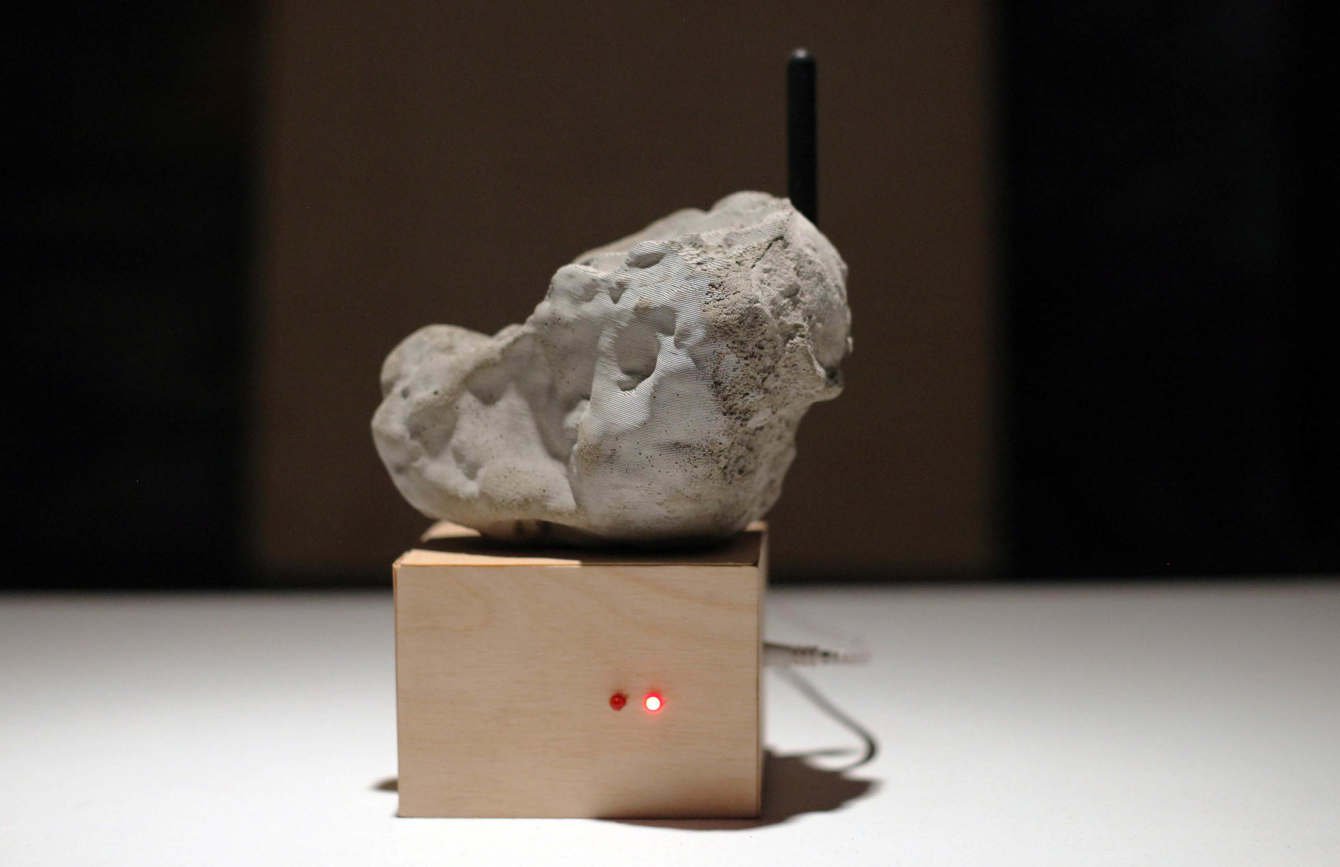
Being Radiotropic: An Orbit is a router that couples signal strength with moon phase. For one day per month it provides maximum wifi signal, and for one day a month it provides no network at all. Between these points the signal waxes and wanes, oscillating over a 28 day period. Image from https://tegabrain.com/Being-Radiotropic

Being Radiotropic: Open Flame is a router paired with a candle. To bring up this network the candle must be lit and when it is blown out, the network disappears. Image from https://tegabrain.com/Being-Radiotropic
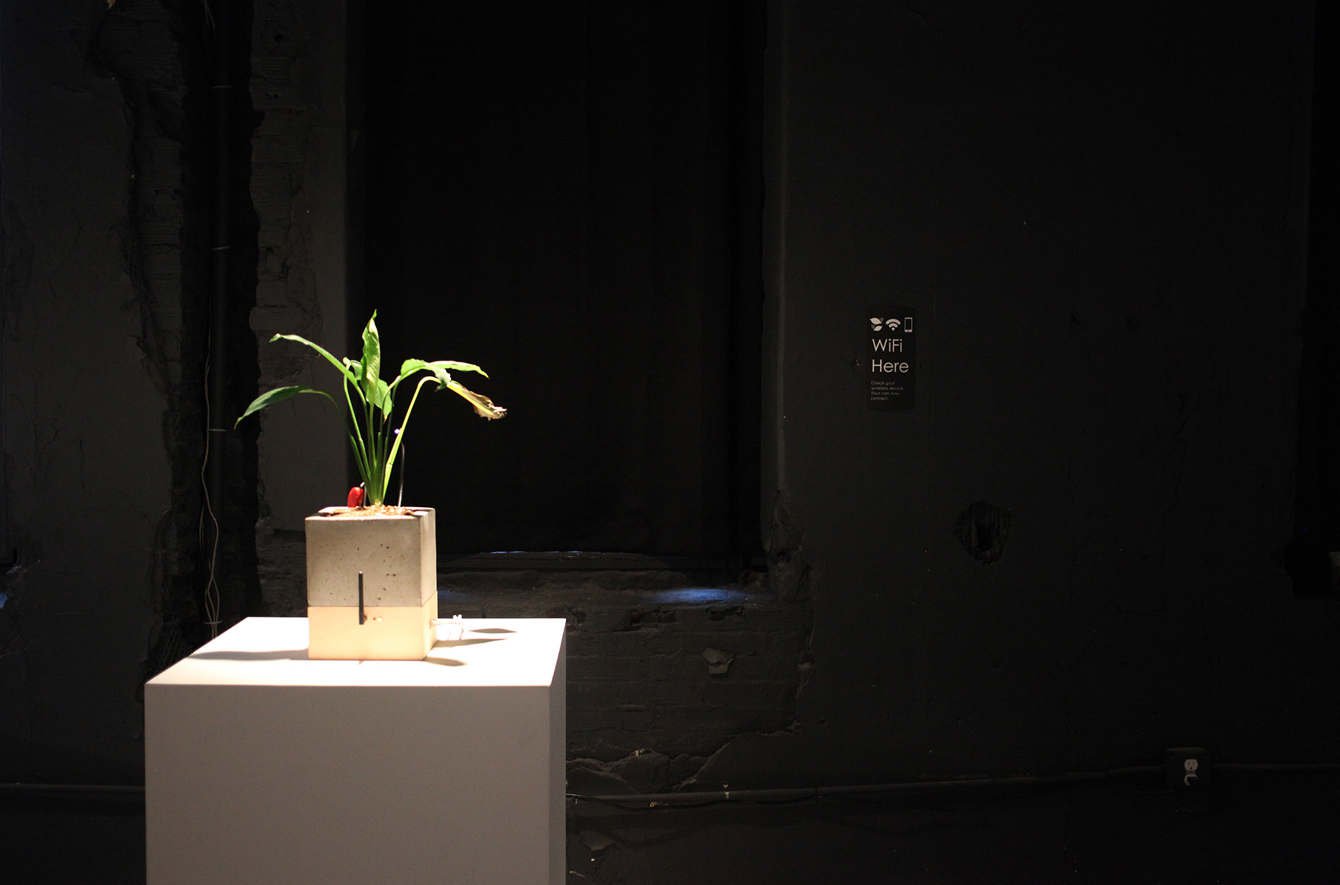
Being Radiotropic: The Woods offers a wireless network controlled by the disposition of a house plant. This router equips the plant with the ability to manipulate the content of websites accessed on its network. Image from https://tegabrain.com/Being-Radiotropic
We are radiotropes. Just as other lifeforms orientate themselves in response to the sun's radiation, many contemporary human behaviors are shaped by electromagnetic landscapes and signal topographies. We prepare for the quiet zone of the subway and notice how data speeds vary as we move between networks and across geographies.
Being Radiotropic is a series of eccentric wireless routers that explore this sensitivity and that asks how we might otherwise design our wireless infrastructures. [...]
These devices are examples of eccentric engineering. Eccentric engineering asks questions of how we design the everyday technologies that sustain us. It is a provocation for thinking about infrastructures as negotiations with non-human organisms and systems, rather than as exclusively human services.
How might our technologies be designed to represent and amplify our interactions with non-human organisms and environmental systems, rather than conceal these intimacies?
2016, Tega Brain, http://tegabrain.com/Being-Radiotropic, submitted by Tega Brain

Being Radiotropic: An Orbit is a router that couples signal strength with moon phase. For one day per month it provides maximum wifi signal, and for one day a month it provides no network at all. Between these points the signal waxes and wanes, oscillating over a 28 day period. Image from https://tegabrain.com/Being-Radiotropic
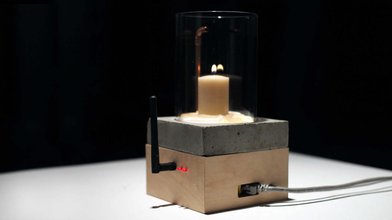
Being Radiotropic: Open Flame is a router paired with a candle. To bring up this network the candle must be lit and when it is blown out, the network disappears. Image from https://tegabrain.com/Being-Radiotropic
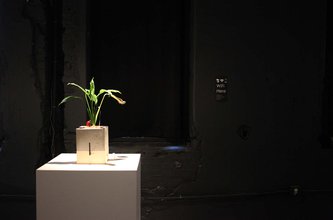
Being Radiotropic: The Woods offers a wireless network controlled by the disposition of a house plant. This router equips the plant with the ability to manipulate the content of websites accessed on its network. Image from https://tegabrain.com/Being-Radiotropic
(573)
2016
From Webcams to Wikipedia
Angela Washko
The internet has always been a boys club. Women who choose to delve deeper into the net than their email inboxes needn’t look very far to find themselves bombarded by the proliferation of archaic negative gender-based stereotypes in almost every digital space, including online games, meme culture, forums, online journalism, YouTube, and beyond. Every major platform and communication model online appears to be a megaphone for men to remind women that women don’t belong or that they are only allowed to participate if they accept their role as objects of admiration or quiet, non-opinionated users, in the event they aren’t deemed attractive enough for the former role. It is not uncommon for women online to be stalked, to receive death threats, and to be doxxed. And it is implicitly accepted that women will be under constant scrutiny in most digital spaces, especially if they dare to question these pervasive misogynistic field conditions.
Fortunately the tides are turning. More and more female cultural producers are forming solidarity networks online, carving out safe spaces for their voices and work. When traditional models of presentation-outside the screen-exclude them, these women have found methods for distributing their work online and producing pieces that explicitly respond to and resist the oppressive climate therein. Self organized all-female networks like the following have emerged: publishing projects The Illuminati Girl Gang and Girls Get Busy; all-female social media-based discussion groups and email listservs like FACES (x) and [secret girl group] on Facebook; academia-based feminist online art and technology education networks like FemTechNet; (x) women’s indie game making and programming collectives like Dames Making Games and Black Girls Code; (x) feminist online apps and participatory websites like Hollaback!, The Everyday Sexism Project and Stop Street Harassment; feminist podcasts and tumblrs like Women As Objects; as well as individual artists, critics, curators, writers, academics, and supporting institutions. These are all a part of what I would like to consider a new social movement advocating the shift of acceptable behavior on the internet toward greater inclusivity for women.
2016, Angela Washko, “From Webcams to Wikipedia: There Is An Art & Feminism Online Social Movement Happening and It Is Not Going Away,” https://tidsskrift.dk/ntik/article/view/25883/22791; submitted by Angela Washko
The internet has always been a boys club. Women who choose to delve deeper into the net than their email inboxes needn’t look very far to find themselves bombarded by the proliferation of archaic negative gender-based stereotypes in almost every digital space, including online games, meme culture, forums, online journalism, YouTube, and beyond. Every major platform and communication model online appears to be a megaphone for men to remind women that women don’t belong or that they are only allowed to participate if they accept their role as objects of admiration or quiet, non-opinionated users, in the event they aren’t deemed attractive enough for the former role. It is not uncommon for women online to be stalked, to receive death threats, and to be doxxed. And it is implicitly accepted that women will be under constant scrutiny in most digital spaces, especially if they dare to question these pervasive misogynistic field conditions.
Fortunately the tides are turning. More and more female cultural producers are forming solidarity networks online, carving out safe spaces for their voices and work. When traditional models of presentation-outside the screen-exclude them, these women have found methods for distributing their work online and producing pieces that explicitly respond to and resist the oppressive climate therein. Self organized all-female networks like the following have emerged: publishing projects The Illuminati Girl Gang and Girls Get Busy; all-female social media-based discussion groups and email listservs like FACES (x) and [secret girl group] on Facebook; academia-based feminist online art and technology education networks like FemTechNet; (x) women’s indie game making and programming collectives like Dames Making Games and Black Girls Code; (x) feminist online apps and participatory websites like Hollaback!, The Everyday Sexism Project and Stop Street Harassment; feminist podcasts and tumblrs like Women As Objects; as well as individual artists, critics, curators, writers, academics, and supporting institutions. These are all a part of what I would like to consider a new social movement advocating the shift of acceptable behavior on the internet toward greater inclusivity for women.
2016, Angela Washko, “From Webcams to Wikipedia: There Is An Art & Feminism Online Social Movement Happening and It Is Not Going Away,” https://tidsskrift.dk/ntik/article/view/25883/22791; submitted by Angela Washko
(574)
2017
On #GLITCHFEMINISM and the Glitch Feminism Manifesto
Legacy Russell
While the hashtag of #GLITCHFEMINISM has taken on a life of its own in the form of an ever-expanding digital archive, glitched bodies themselves “refuse … order” in wandering within a wildness of unrecognizable being, actively re-imagining and re-centering neoteric realities. Glitched bodies vivify and live on via the material of the Internet; thus these bodies, always online, remain current in their presence, and, as such are not placed within the quiet annals of history. They stretch beyond an archival construct as yoked to or embedded within a specific moment in time. The mythologies as driven by narrative history only surface in the 20/20 perspective that comes with the privileges of hindsight. It is the archiving of material that allows for those perspectives to deepen as time passes. […] Counter to this, the glitched body remains contemporary, rejects historical processing, and celebrates its disorder as a mark of success within a social system that strangles with the fetishism of categorisation. In turn, #GLITCHFEMINISM ever-operates as a living network, its data celebrated in its non-sense.
2017, Legacy Russell, Res., October 17, 2017, http://beingres.org/2017/10/17/legacy-russell/
While the hashtag of #GLITCHFEMINISM has taken on a life of its own in the form of an ever-expanding digital archive, glitched bodies themselves “refuse … order” in wandering within a wildness of unrecognizable being, actively re-imagining and re-centering neoteric realities. Glitched bodies vivify and live on via the material of the Internet; thus these bodies, always online, remain current in their presence, and, as such are not placed within the quiet annals of history. They stretch beyond an archival construct as yoked to or embedded within a specific moment in time. The mythologies as driven by narrative history only surface in the 20/20 perspective that comes with the privileges of hindsight. It is the archiving of material that allows for those perspectives to deepen as time passes. […] Counter to this, the glitched body remains contemporary, rejects historical processing, and celebrates its disorder as a mark of success within a social system that strangles with the fetishism of categorisation. In turn, #GLITCHFEMINISM ever-operates as a living network, its data celebrated in its non-sense.
2017, Legacy Russell, Res., October 17, 2017, http://beingres.org/2017/10/17/legacy-russell/
(575)
2017
Decolonising Bots: Revelation and Revolution through the Glitch
Florence Okoye
For the designer to be an agent of decolonisation, first must come the paradoxical step of both acknowledging the current limitations and the parallel impressive power of design to expose and encode social models of thought. Only when fully cognisant of how the capitalist engine seeks to divide those who are in service to technological production, can the designer turn ambassador—no, advocate for the user. Not only by producing, but by outreach and education, by truly enmeshing themselves and their whole practice into the world of their users.
Ultimately, in order to decolonise, one must first understand that there is an other; that there are other voices who have always been present, documenting their existences. What lies between revelation and practice; how the unseen other is to be encoded, or indeed how we are to resist their encoding at all requires an answer that will not be reduced to a single mission statement or an iterative function.
2017, Florence Okoye, Bot Club, Het Nieuwe Instituut, October 26, 2017, https://botclub.hetnieuweinstituut.nl/en/decolonising-bots-revelation-and-revolution-through-glitch
For the designer to be an agent of decolonisation, first must come the paradoxical step of both acknowledging the current limitations and the parallel impressive power of design to expose and encode social models of thought. Only when fully cognisant of how the capitalist engine seeks to divide those who are in service to technological production, can the designer turn ambassador—no, advocate for the user. Not only by producing, but by outreach and education, by truly enmeshing themselves and their whole practice into the world of their users.
Ultimately, in order to decolonise, one must first understand that there is an other; that there are other voices who have always been present, documenting their existences. What lies between revelation and practice; how the unseen other is to be encoded, or indeed how we are to resist their encoding at all requires an answer that will not be reduced to a single mission statement or an iterative function.
2017, Florence Okoye, Bot Club, Het Nieuwe Instituut, October 26, 2017, https://botclub.hetnieuweinstituut.nl/en/decolonising-bots-revelation-and-revolution-through-glitch
(576)
2017
Open Source Estrogen: From Biomolecules to Biopolitics … Hormones with Institutional Biopower!
Mary Maggic
Open Source Estrogen began with a speculative question: what if it were possible to synthesize estrogen in the kitchen? This is not a purely scientific question of how to chemically make estrogen like some kind of covert meth lab, let alone appropriating said protocols to fit the modest instruments of a kitchen. It requires uncovering the socio-political history of hormones, how they were assigned their institutional biopower, and how their pervasive presence in our environments problematizes our social notions of gender. The act of “hacking” not only refers to the hacking of organisms, hardware, and protocols—it represents equally the unearthing of deeply entrenched notions (black-boxed knowledge) of sex and gender, and the various ways institutions both regulate and pollute our bodies and bodies of nonhuman species. For example when I work with collaborators and participants to extract estrogenic pollutants from a local river, not only do we translate esoteric laboratory protocols into feasible “recipes,” we also begin to investigate the institutional actors who have “queered” the river and how we can move beyond (now) knowing these scandalous levels of estrogen in the environment (how to be of-a-world).
2017, Mary Tsang (Mary Maggic), (master’s thesis, MIT, 2017); excerpt p. 17
https://www.are.na/block/7908903
Open Source Estrogen began with a speculative question: what if it were possible to synthesize estrogen in the kitchen? This is not a purely scientific question of how to chemically make estrogen like some kind of covert meth lab, let alone appropriating said protocols to fit the modest instruments of a kitchen. It requires uncovering the socio-political history of hormones, how they were assigned their institutional biopower, and how their pervasive presence in our environments problematizes our social notions of gender. The act of “hacking” not only refers to the hacking of organisms, hardware, and protocols—it represents equally the unearthing of deeply entrenched notions (black-boxed knowledge) of sex and gender, and the various ways institutions both regulate and pollute our bodies and bodies of nonhuman species. For example when I work with collaborators and participants to extract estrogenic pollutants from a local river, not only do we translate esoteric laboratory protocols into feasible “recipes,” we also begin to investigate the institutional actors who have “queered” the river and how we can move beyond (now) knowing these scandalous levels of estrogen in the environment (how to be of-a-world).
2017, Mary Tsang (Mary Maggic), (master’s thesis, MIT, 2017); excerpt p. 17
https://www.are.na/block/7908903
(577)
2017
Broad Band: The Untold Story of the Women Who Made the Internet
Claire L. Evans
The history of technology you probably know is one of men and machines, garages and riches, alpha nerds and brogrammers. But female visionaries have always been at the vanguard of technology and innovation—they’ve just been erased from the story. Until now.
Join the ranks of the pioneers who defied convention and the longest odds to become database poets, information-wranglers, hypertext dreamers, and glass ceiling-shattering dot com-era entrepreneurs.
Welcome to the Broad Band.
2018, Claire L. Evans (New York: Portfolio/Penguin, 2018); excerpt from Portfolio/Penguin
The history of technology you probably know is one of men and machines, garages and riches, alpha nerds and brogrammers. But female visionaries have always been at the vanguard of technology and innovation—they’ve just been erased from the story. Until now.
Join the ranks of the pioneers who defied convention and the longest odds to become database poets, information-wranglers, hypertext dreamers, and glass ceiling-shattering dot com-era entrepreneurs.
Welcome to the Broad Band.
2018, Claire L. Evans (New York: Portfolio/Penguin, 2018); excerpt from Portfolio/Penguin
(578)
2017
Feminist Internet Manifesto 1.0
Feminist Internet
INTEGRATES: The Feminist Internet moves fluidly between the online and offline, understanding that both make up the everyday experiences of those with access to the internet. We use the online to affect change offline, and the offline to affect change online.
COOPERATES: The Feminist Internet is against the competitive individualism of today’s world. It believes in collectively building an internet where information and opportunities can be accessed by all. It is not driven by a profit motive, but by a belief in the power of solidarity.
ERADICATES: The Feminist Internet enables the systematic dismantling of all forms of online violence including rape culture, hate speech, and trolling. It abolishes unlawful rape porn sites/pornography and any other material contributing to rape culture.
2017, Feminist Internet, https://www.feministinternet.com/manifesto/
Participants include Richard Ashton, Sabrina Faramarzi, Megan Louise Visser, Helen Brewer, Eden Clark, Jelly Luise, Rhiannon Williams, Toshika Kosako, Roxanne Leitão, Daseul (Shuri) Kim, Torisheju Francesca Dumi, Jenny Ryder-O’Regan, Joëlla Vera Bril, Lucy Samantha Martin, Clara Finnigan, Zoe Wheeler, Conor Rigby, Georgina Capdevila, and Charlotte Webb.
INTEGRATES: The Feminist Internet moves fluidly between the online and offline, understanding that both make up the everyday experiences of those with access to the internet. We use the online to affect change offline, and the offline to affect change online.
COOPERATES: The Feminist Internet is against the competitive individualism of today’s world. It believes in collectively building an internet where information and opportunities can be accessed by all. It is not driven by a profit motive, but by a belief in the power of solidarity.
ERADICATES: The Feminist Internet enables the systematic dismantling of all forms of online violence including rape culture, hate speech, and trolling. It abolishes unlawful rape porn sites/pornography and any other material contributing to rape culture.
2017, Feminist Internet, https://www.feministinternet.com/manifesto/
Participants include Richard Ashton, Sabrina Faramarzi, Megan Louise Visser, Helen Brewer, Eden Clark, Jelly Luise, Rhiannon Williams, Toshika Kosako, Roxanne Leitão, Daseul (Shuri) Kim, Torisheju Francesca Dumi, Jenny Ryder-O’Regan, Joëlla Vera Bril, Lucy Samantha Martin, Clara Finnigan, Zoe Wheeler, Conor Rigby, Georgina Capdevila, and Charlotte Webb.
(579)
2017
Why Siri Sounds Like A Girl, But Says She Is Beyond Gender
Katy Gero
When I ask Siri “What is your gender?” she tells me that she is beyond my human concept of gender. Whoa. I’ve never felt insulted for being human before or been reprimanded by a machine for submitting to gender norms. […] All our digital assistants are women, or at least women sounding. Siri, (622) Google Now, Alexa, Cortana, and a handful of other virtual chatbots here to make our day easier talk to us with the friendly intonation of a young female. With such consistency across the board, there must be some good reasoning behind it. It’s an easy grab to suggest that women are easier to understand, but it’s not true. Gizmodo easily debunks the myth that the higher-pitched female voice is more intelligible. […] “In our research for Cortana, both men and women prefer a woman, younger, for their personal assistant, by a country mile,” Derek Connell, senior vice president of research at Microsoft, told the NYT. […] Then it’s done: Siri is a woman because it’s what we want.
2017, Katy Gero, SheCanCode, May 30, 2017, https://shecancode.io/blog/why-siri-sounds-like-a-girl-but-says-she-is-beyond-gender
When I ask Siri “What is your gender?” she tells me that she is beyond my human concept of gender. Whoa. I’ve never felt insulted for being human before or been reprimanded by a machine for submitting to gender norms. […] All our digital assistants are women, or at least women sounding. Siri, (622) Google Now, Alexa, Cortana, and a handful of other virtual chatbots here to make our day easier talk to us with the friendly intonation of a young female. With such consistency across the board, there must be some good reasoning behind it. It’s an easy grab to suggest that women are easier to understand, but it’s not true. Gizmodo easily debunks the myth that the higher-pitched female voice is more intelligible. […] “In our research for Cortana, both men and women prefer a woman, younger, for their personal assistant, by a country mile,” Derek Connell, senior vice president of research at Microsoft, told the NYT. […] Then it’s done: Siri is a woman because it’s what we want.
2017, Katy Gero, SheCanCode, May 30, 2017, https://shecancode.io/blog/why-siri-sounds-like-a-girl-but-says-she-is-beyond-gender
(580)
2017
We’re All Connected Now, So Why Is The Internet So White and Western?
Mark Graham, Anasuya Sengupta
The networking of humanity is no longer confined to a few economically prosperous parts of the world. For the first time in history, we are creating a truly global and accessible communication network. However, while access to the internet is quickly being democratized, research by us for the Geonet project at the Oxford Internet Institute shows that web content remains heavily skewed towards rich, western countries. […] So 20% of the world or less shapes our understanding of 80% of the world. This causes an amplification of geographical and gendered biases, including on search engines like Google. […] We—as users—also have a responsibility to question the perspectives presented to us by the Googles and the Wikipedias of the world, and perhaps also to change them: to edit, to create, and to build the internet we want to see.
2017, Anasuya Sengupta and Mark Graham, Guardian, October 5, 2017, https://www.theguardian.com/commentisfree/2017/oct/05/internet-white-western-google-wikipedia-skewed
The networking of humanity is no longer confined to a few economically prosperous parts of the world. For the first time in history, we are creating a truly global and accessible communication network. However, while access to the internet is quickly being democratized, research by us for the Geonet project at the Oxford Internet Institute shows that web content remains heavily skewed towards rich, western countries. […] So 20% of the world or less shapes our understanding of 80% of the world. This causes an amplification of geographical and gendered biases, including on search engines like Google. […] We—as users—also have a responsibility to question the perspectives presented to us by the Googles and the Wikipedias of the world, and perhaps also to change them: to edit, to create, and to build the internet we want to see.
2017, Anasuya Sengupta and Mark Graham, Guardian, October 5, 2017, https://www.theguardian.com/commentisfree/2017/oct/05/internet-white-western-google-wikipedia-skewed
(581)
2017
After the Future: n Hypotheses of Post-Cyber Feminism
Helen Hester
Why suggest an unlimited number of hypotheses here? Doesn’t this undo our commitment to emphatic claims making at the very moment we appear to insist upon it? Partly, this is to recognise just how justified the OBN and other cyberfeminists were when they pointed to the perils of self-definition. Articulating identities is indeed fraught with risks. As [James Pei-Mun] Tsang points out, it would be ill-advised to “disavow declarative function, but we must productively work with the fact that it continuously breaks down.” In talking of “n hypotheses”, we acknowledge the inevitability of this breakdown—the inability of any single declaration to capture our intentions, for example, or the probable failure of any given articulation to galvanize a collective political will in the ways that we might hope. We point to the strategic necessity of articulating (and thereby generating) a political identity without foreclosing in advance what that identity might mean. The iterative and open-ended nature of “n hypotheses” (reminiscent of both gender performativity and Butlerian approaches to hegemony building) stresses their availability for emendation and our appreciation of the fact that any emancipatory political project must incessantly revise its commitments.
2017, Helen Hester, Res., June 30, 2017, https://beingres.org/2017/06/30/afterthefuture-helenhester/
Why suggest an unlimited number of hypotheses here? Doesn’t this undo our commitment to emphatic claims making at the very moment we appear to insist upon it? Partly, this is to recognise just how justified the OBN and other cyberfeminists were when they pointed to the perils of self-definition. Articulating identities is indeed fraught with risks. As [James Pei-Mun] Tsang points out, it would be ill-advised to “disavow declarative function, but we must productively work with the fact that it continuously breaks down.” In talking of “n hypotheses”, we acknowledge the inevitability of this breakdown—the inability of any single declaration to capture our intentions, for example, or the probable failure of any given articulation to galvanize a collective political will in the ways that we might hope. We point to the strategic necessity of articulating (and thereby generating) a political identity without foreclosing in advance what that identity might mean. The iterative and open-ended nature of “n hypotheses” (reminiscent of both gender performativity and Butlerian approaches to hegemony building) stresses their availability for emendation and our appreciation of the fact that any emancipatory political project must incessantly revise its commitments.
2017, Helen Hester, Res., June 30, 2017, https://beingres.org/2017/06/30/afterthefuture-helenhester/
(582)
2017
Post-Cyber Feminist International
Helen Hester
Traversing the fields of philosophy, art, performance, politics and gender theory, this five day convening of thinkers and artists advances discourses of techno-feminism that have unfolded over the past two decades. Programmed in partnership with writer Helen Hester, Post-Cyber Feminist International marks twenty years since The First Cyberfeminist International (Documenta X, Kassel, Germany, 1997) and pays homage to its productive format and legacy. With the technological landscape vastly changed since the first International, we are living in a time well beyond the imagined future of the first cyberfeminists. Expanding upon this particular genealogy, this convening purposefully constellates thinkers to consider a new vision for post-cyber feminism that is substantive and developed, without being exclusionary of contestation.
2017, Helen Hester, organizer (gathering, Institute of Contemporary Arts, London, UK, November 15–19, 2017); excerpt from “Post-Cyber Feminist International,” Institute of Contemporary Arts, https://archive.ica.art/whats-on/season/post-cyber-feminist-international/
https://www.are.na/block/7934184
London
Traversing the fields of philosophy, art, performance, politics and gender theory, this five day convening of thinkers and artists advances discourses of techno-feminism that have unfolded over the past two decades. Programmed in partnership with writer Helen Hester, Post-Cyber Feminist International marks twenty years since The First Cyberfeminist International (Documenta X, Kassel, Germany, 1997) and pays homage to its productive format and legacy. With the technological landscape vastly changed since the first International, we are living in a time well beyond the imagined future of the first cyberfeminists. Expanding upon this particular genealogy, this convening purposefully constellates thinkers to consider a new vision for post-cyber feminism that is substantive and developed, without being exclusionary of contestation.
2017, Helen Hester, organizer (gathering, Institute of Contemporary Arts, London, UK, November 15–19, 2017); excerpt from “Post-Cyber Feminist International,” Institute of Contemporary Arts, https://archive.ica.art/whats-on/season/post-cyber-feminist-international/
https://www.are.na/block/7934184
London
(583)
2017
Architectures of Online Harassment
Maya Ganesh, Caroline Sinders
Caroline [Sinders] and I wanted to visualize and concretise the technical, cultural, social, and psychosocial elements of harassment; and to experiment with different methods to think about the problem. Why? Because approaching online harassment from the perspective of freedom of speech and human rights sets a specific frame on the problem and approaches solutions through the state and the law, even as the reach of these agencies are complex to establish in the governance of the internet.
If we want to think about minimizing and controlling the impact and scale of harassment, then we perhaps need to think of it at a more granular level, as a socio-technical problem, and as something that is contextually constituted by the interactions of human behavior, technical interfaces, and social context. We set out to map the problem of harassment from a forensic perspective, taking a transversal cut through the dimensions of how it happens and thinking about ways to represent it in system, and human terms.
2017, Maya Ganesh and Caroline Sinders; excerpt from Maya Ganesh, “The Architectures of Online Harassment (Part 1),” GenderIT.org, February 21, 2017, https://www.genderit.org/feminist-talk/architectures-online-harassment-part-1
Caroline [Sinders] and I wanted to visualize and concretise the technical, cultural, social, and psychosocial elements of harassment; and to experiment with different methods to think about the problem. Why? Because approaching online harassment from the perspective of freedom of speech and human rights sets a specific frame on the problem and approaches solutions through the state and the law, even as the reach of these agencies are complex to establish in the governance of the internet.
If we want to think about minimizing and controlling the impact and scale of harassment, then we perhaps need to think of it at a more granular level, as a socio-technical problem, and as something that is contextually constituted by the interactions of human behavior, technical interfaces, and social context. We set out to map the problem of harassment from a forensic perspective, taking a transversal cut through the dimensions of how it happens and thinking about ways to represent it in system, and human terms.
2017, Maya Ganesh and Caroline Sinders; excerpt from Maya Ganesh, “The Architectures of Online Harassment (Part 1),” GenderIT.org, February 21, 2017, https://www.genderit.org/feminist-talk/architectures-online-harassment-part-1
(584)
2017
Feminist Internet
Feminist Internet
There is no feminism, only possible feminisms. There is no internet, only possible internets. […] The Feminist Internet is a group of artists and designers on a mission to advance internet equalities for women and other marginalised groups through creative, critical practice. Why Feminist Internet? The internet holds huge potential for liberation and political transformation. However many of society’s inequalities are encoded in its structures, processes and communities. Whether it’s digital platforms allowing online abuse against women, lack of workforce diversity in the tech sector, biased data collection reinforcing privileges or sexist naming of subservient chatbots, there are many issues to address. Feminist Internet is here to intervene and ensure an equal and just internet for all.
2017, https://www.feministinternet.com/; excerpt from Charlotte Webb, email to Mindy Seu, October 16, 2019
https://www.feministinternet.com/
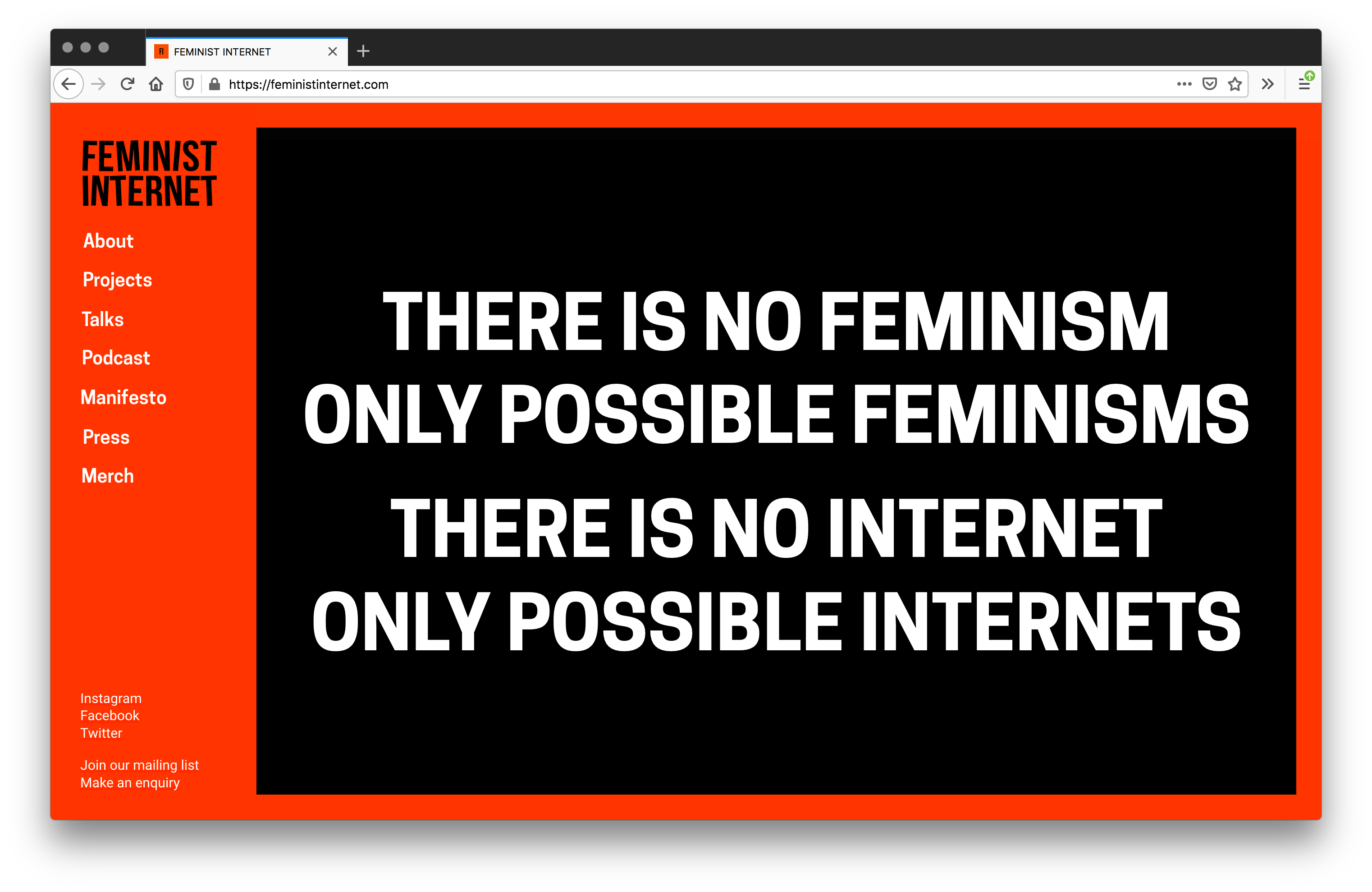
Screenshot, 2020, Firefox v76.0.1 on Mac OS 10.13.3; https://www.feministinternet.com/
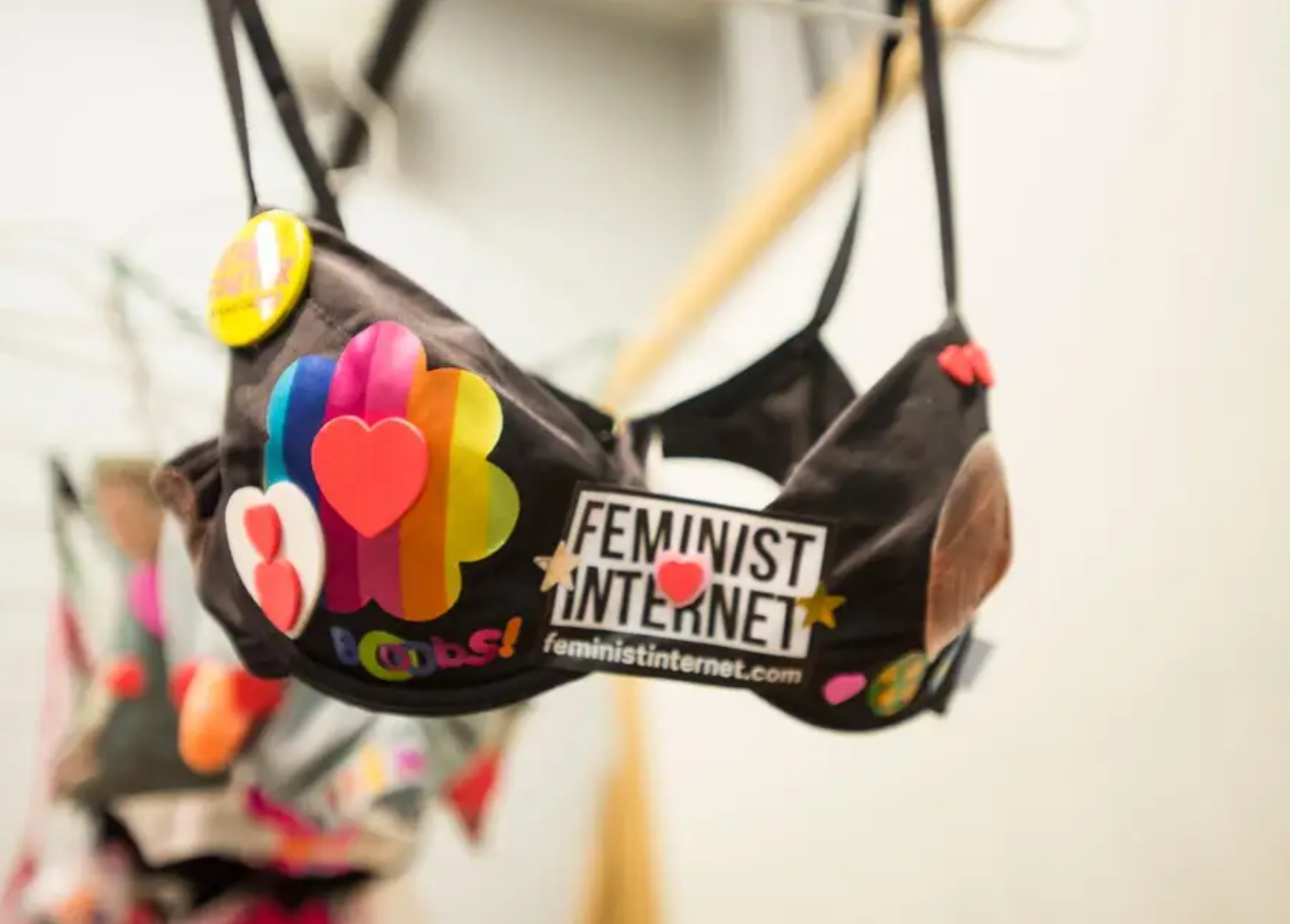
Image from the Evening Standard, https://www.standard.co.uk/tech/women-in-tech-dr-charlotte-webb-feminist-internet-a3887071.html
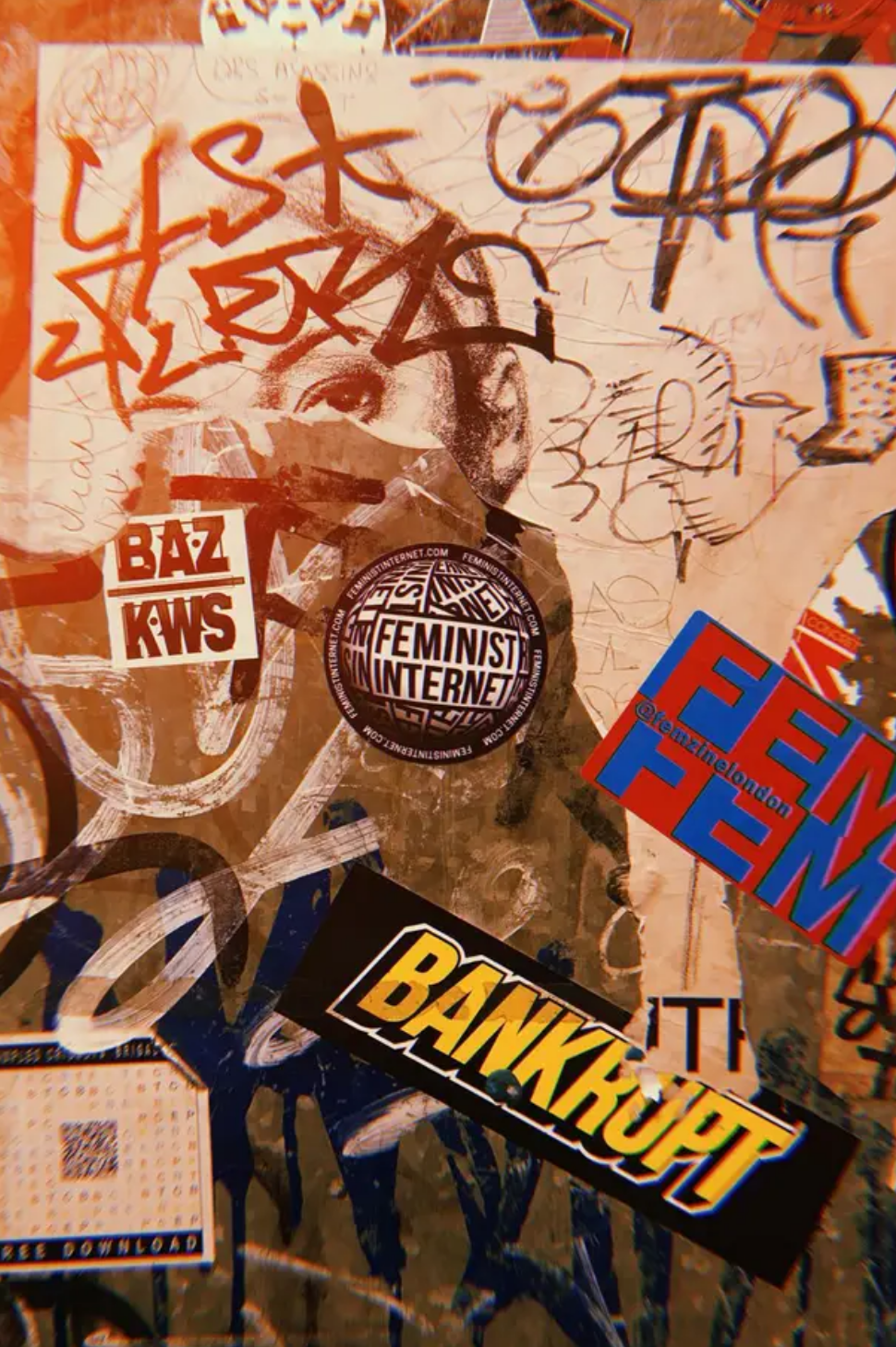
Image from the Evening Standard, https://www.standard.co.uk/tech/women-in-tech-dr-charlotte-webb-feminist-internet-a3887071.html
There is no feminism, only possible feminisms. There is no internet, only possible internets. […] The Feminist Internet is a group of artists and designers on a mission to advance internet equalities for women and other marginalised groups through creative, critical practice. Why Feminist Internet? The internet holds huge potential for liberation and political transformation. However many of society’s inequalities are encoded in its structures, processes and communities. Whether it’s digital platforms allowing online abuse against women, lack of workforce diversity in the tech sector, biased data collection reinforcing privileges or sexist naming of subservient chatbots, there are many issues to address. Feminist Internet is here to intervene and ensure an equal and just internet for all.
2017, https://www.feministinternet.com/; excerpt from Charlotte Webb, email to Mindy Seu, October 16, 2019
https://www.feministinternet.com/

Screenshot, 2020, Firefox v76.0.1 on Mac OS 10.13.3; https://www.feministinternet.com/

Image from the Evening Standard, https://www.standard.co.uk/tech/women-in-tech-dr-charlotte-webb-feminist-internet-a3887071.html

Image from the Evening Standard, https://www.standard.co.uk/tech/women-in-tech-dr-charlotte-webb-feminist-internet-a3887071.html
(585)
2017
Data Domination
Mistress Harley
So much of our sex life happens online. We stream porn, swipe on Tinder, send pics of our bits on Snapchat, and Skype our fantasies to lovers across oceans. Our psyches are becoming so enmeshed with our computers that's becoming difficult to tell where we end and the cyber world begins. A trailblazing woman has stepped into this new frontier to open up a modern form of domination and submission: data domination.
Mistress Harley is a tech domme. Instead of dominating bodies, she dominates online life. This includes bank accounts, emails, social media and porn. The potential impact of a session with her can last longer than any bruise. […] “I noticed there was a niche in that market of people looking for real life control through their computers,” she says. […] Eventually, Harley combined the skills she gained through programming and domming to control clients’ digital lives. Turns out, the Internet is an incredible mechanism for control. […] “It has nothing to do with his body and nothing to do with my body,” says Harley, “It really has to do with me having that intimate knowledge of everything. He has no secrets from me. And that’s really powerful.”
2016, Mistress Harley, https://www.mistressharley.com/; excerpt from Jessica Placzek, “A New Kind of Kink: Data Domination,” Vice, January 3, 2016, https://www.vice.com/en/article/pg755k/a-new-kind-of-kink-data-domination
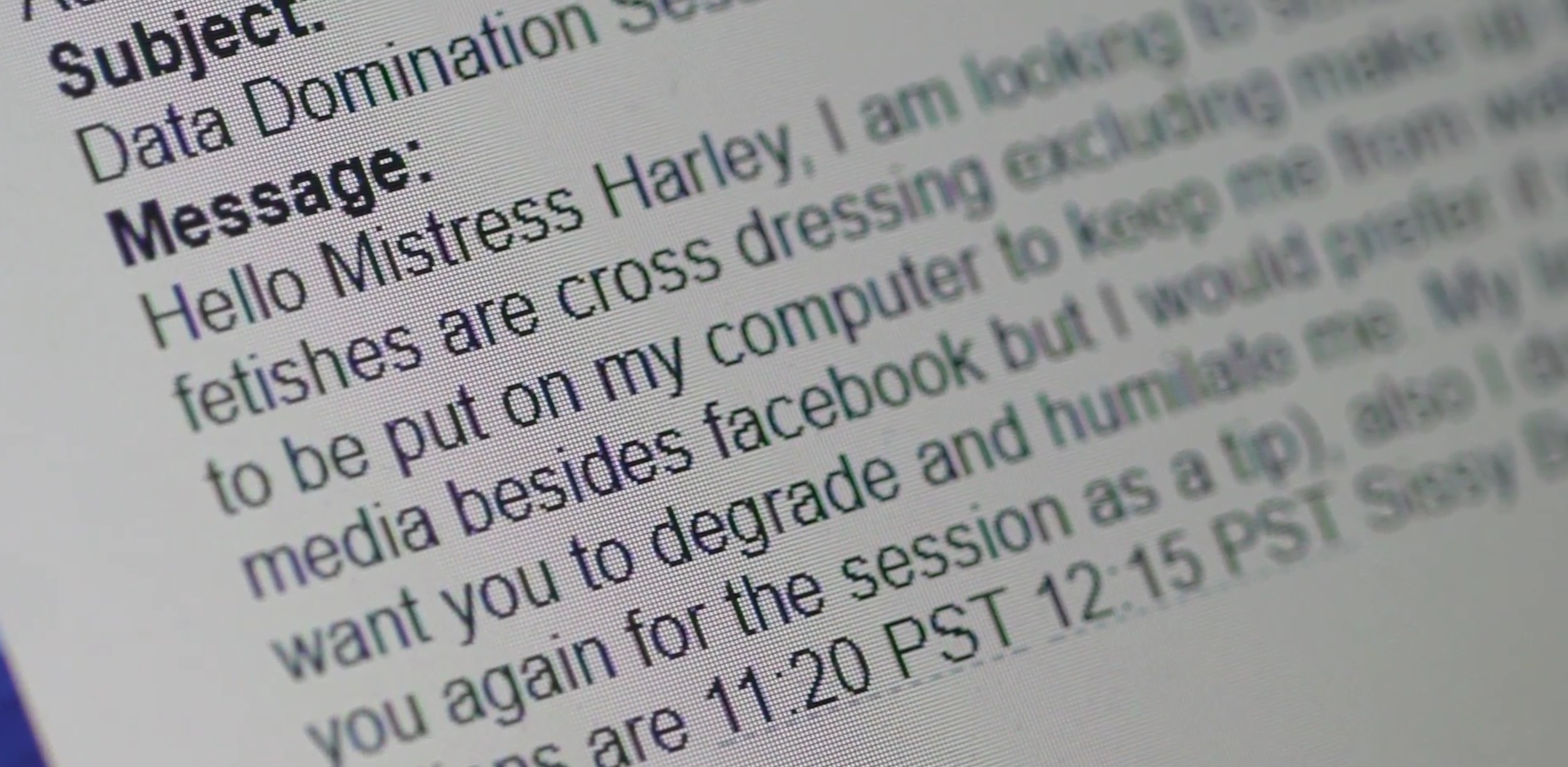
“Hacking, castration and the future of financial domination,” Engadget, video still 00:07, https://www.youtube.com/watch?v=nq3TDmBQ2us&t=50s

“Hacking, castration and the future of financial domination,” Engadget, video still 00:23, https://www.youtube.com/watch?v=nq3TDmBQ2us&t=50s
So much of our sex life happens online. We stream porn, swipe on Tinder, send pics of our bits on Snapchat, and Skype our fantasies to lovers across oceans. Our psyches are becoming so enmeshed with our computers that's becoming difficult to tell where we end and the cyber world begins. A trailblazing woman has stepped into this new frontier to open up a modern form of domination and submission: data domination.
Mistress Harley is a tech domme. Instead of dominating bodies, she dominates online life. This includes bank accounts, emails, social media and porn. The potential impact of a session with her can last longer than any bruise. […] “I noticed there was a niche in that market of people looking for real life control through their computers,” she says. […] Eventually, Harley combined the skills she gained through programming and domming to control clients’ digital lives. Turns out, the Internet is an incredible mechanism for control. […] “It has nothing to do with his body and nothing to do with my body,” says Harley, “It really has to do with me having that intimate knowledge of everything. He has no secrets from me. And that’s really powerful.”
2016, Mistress Harley, https://www.mistressharley.com/; excerpt from Jessica Placzek, “A New Kind of Kink: Data Domination,” Vice, January 3, 2016, https://www.vice.com/en/article/pg755k/a-new-kind-of-kink-data-domination
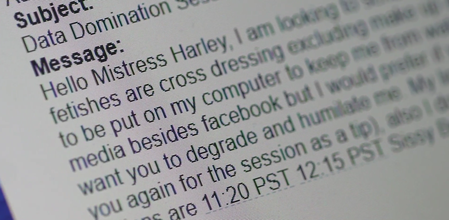
“Hacking, castration and the future of financial domination,” Engadget, video still 00:07, https://www.youtube.com/watch?v=nq3TDmBQ2us&t=50s
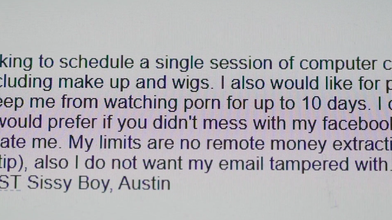
“Hacking, castration and the future of financial domination,” Engadget, video still 00:23, https://www.youtube.com/watch?v=nq3TDmBQ2us&t=50s
(586)
2017
Feminist Data Set
Caroline Sinders
What is feminist data? Feminist data can be art works, essays, interviews, and books that are from, about or explore feminism and a feminist perspective. The creation of this feminist data set will act as a means to combat bias and introduce the possibility of data collection as a feminist practice, aiming to produce a slice of data to intervene in larger civic and private networks. Increasingly moving towards design, the series explores how data and interfaces can be agents of change within machine learning systems that are utilized by the public and private sectors of our daily lives. This project uses insights from machine learning analytics, design thinking iterations and interventions to investigate varying methods of creating a feminist data set. Feminist Data Set proposes an intersectional feminist antidote to the default usage of patriarchal language. The work asks: can data collection itself function as an artwork? Can it act as a form of protest?
2017, Caroline Sinders, https://carolinesinders.com/feminist-data-set/
What is feminist data? Feminist data can be art works, essays, interviews, and books that are from, about or explore feminism and a feminist perspective. The creation of this feminist data set will act as a means to combat bias and introduce the possibility of data collection as a feminist practice, aiming to produce a slice of data to intervene in larger civic and private networks. Increasingly moving towards design, the series explores how data and interfaces can be agents of change within machine learning systems that are utilized by the public and private sectors of our daily lives. This project uses insights from machine learning analytics, design thinking iterations and interventions to investigate varying methods of creating a feminist data set. Feminist Data Set proposes an intersectional feminist antidote to the default usage of patriarchal language. The work asks: can data collection itself function as an artwork? Can it act as a form of protest?
2017, Caroline Sinders, https://carolinesinders.com/feminist-data-set/
(587)
2017–
2019
Ghosha
Sachini Perera
Ghosha is a feminist initiative in Sri Lanka that explores the intersections between technology and women’s human rights. Ghosha aims to support, promote and create Sri Lankan women’s voices. Ghosha means loud, noisy, outspoken, disruptive and in short, creating a ruckus.
2017, Sachini Perera, https://web.archive.org/web/20180329110024/https://ghoshawomen.wordpress.com/
Sri Lanka
Ghosha is a feminist initiative in Sri Lanka that explores the intersections between technology and women’s human rights. Ghosha aims to support, promote and create Sri Lankan women’s voices. Ghosha means loud, noisy, outspoken, disruptive and in short, creating a ruckus.
2017, Sachini Perera, https://web.archive.org/web/20180329110024/https://ghoshawomen.wordpress.com/
Sri Lanka
(588)
2017
Radical Outside
Morehshin Allahyari
This is a theory course for critical thinking of technology through the lens of activism, politics, and the “outside”; to think and create beyond technology for technology’s sake; to ask difficult questions; to read, learn, and engage in technology as a field of contemporary art practices and theories, as well as art historical systems. What will separate this course from many others is a collective effort (by all of us) for “reflective thinking”; to not find comfort in how—up to this very day—the story of technology is told to us; by which figures and which systems. I hope that together we can build a new library of critical thinking and reading; written and processed by women (+LGBT) and POC. This is a collaborative course for interrupting and re-building.
2017, Morehshin Allahyari, GitHub, https://github.com/morehshin/TheRadicalOutside; referred by Melanie Hoff
This is a theory course for critical thinking of technology through the lens of activism, politics, and the “outside”; to think and create beyond technology for technology’s sake; to ask difficult questions; to read, learn, and engage in technology as a field of contemporary art practices and theories, as well as art historical systems. What will separate this course from many others is a collective effort (by all of us) for “reflective thinking”; to not find comfort in how—up to this very day—the story of technology is told to us; by which figures and which systems. I hope that together we can build a new library of critical thinking and reading; written and processed by women (+LGBT) and POC. This is a collaborative course for interrupting and re-building.
2017, Morehshin Allahyari, GitHub, https://github.com/morehshin/TheRadicalOutside; referred by Melanie Hoff
(589)
2017
Digital Afterlives of This Bridge Called My Back: Woman of Color Feminism, Digital Labor, and Networked Pedagogy
Lisa Nakamura, Cassius Adair
A closer analysis of Cass’s pirated copy of This Bridge [Called My Back] displays the tension between the liberatory power of free circulation and the labor politics of unpaid work. A “preface” included as the first page of the illegal PDF of the book reads as follows:
Notes for the Downloaders: This book is made of different sources. First, we got the scanned pages from fuckyeahradicalliterature.tumblr.com. Second, we cleaned them up and scanned the missing chapters (Entering the Lives of Others and El Mundo Zurdo). Also, we replaced the images for new, better ones. Unfortunately, our copy of the book has La Prieta, from El Mundo Zurdo, in bad quality, so we got it from scribd.com. Be aware it’s the same text but from another edition of the book, so it has other pagination. Enjoy and share it everywhere! (Anonymous n.d.) These scanners, editors, and curators reflect on the work of textual reproduction, mirroring feminist desire to make visible other forms of reproductive labor. Readers of this digital file are made aware of the modification of the source documents that was necessary to produce a definitive version of this key woman of color feminist text.
2017, Cassius Adair and Lisa Nakamura, in “Critical Pedagogies for a Changing World,” eds. Caroline Batker, Eden Osucha, and Augusta Rohrbach, special issue, American Literature 89, no. 2 (June 2017): pp. 255–278; excerpt p. 267
https://www.are.na/block/7799281
A closer analysis of Cass’s pirated copy of This Bridge [Called My Back] displays the tension between the liberatory power of free circulation and the labor politics of unpaid work. A “preface” included as the first page of the illegal PDF of the book reads as follows:
Notes for the Downloaders: This book is made of different sources. First, we got the scanned pages from fuckyeahradicalliterature.tumblr.com. Second, we cleaned them up and scanned the missing chapters (Entering the Lives of Others and El Mundo Zurdo). Also, we replaced the images for new, better ones. Unfortunately, our copy of the book has La Prieta, from El Mundo Zurdo, in bad quality, so we got it from scribd.com. Be aware it’s the same text but from another edition of the book, so it has other pagination. Enjoy and share it everywhere! (Anonymous n.d.) These scanners, editors, and curators reflect on the work of textual reproduction, mirroring feminist desire to make visible other forms of reproductive labor. Readers of this digital file are made aware of the modification of the source documents that was necessary to produce a definitive version of this key woman of color feminist text.
2017, Cassius Adair and Lisa Nakamura, in “Critical Pedagogies for a Changing World,” eds. Caroline Batker, Eden Osucha, and Augusta Rohrbach, special issue, American Literature 89, no. 2 (June 2017): pp. 255–278; excerpt p. 267
https://www.are.na/block/7799281
(590)
2017
re: skinonskinonskin
Rindon Johnson
whispers = new Array();
whispers[0] = “breath me”;
whispers[1] = “i will love you forever”;
whispers[2] = “skin”;
whispers[3] = “skin on skin”;
whispers[4] = “skin on skin on skin”;
whispers[5] = “implode”;
whispers[6] = “soft”;
whispers[7] = “slow”;
whispers[8] = “can you feel me?”;
whispers[9] = “touch me”;
whispers[10] = “one more cigarette”;
whispers[11] = “i am so open”;
whispers[12] = “i want to feel you inside of me”;
whispers[13] = “smoke”;
whispers[14] = “i want to breathe you”;
whispers[15] = “we are smoke”;
whispers[16] = “yesss”;
whispers[17] = “deeper”;
whispers[18] = “i am disappearing”;
whispers[19] = “warm”;
Following the format of breath.html, each page of skinonskinonskin (x) is a love letter, code, and output. Some pages are clear. “come” for example, begins on the grid of a series of images of a warehouse, when the user clicks on one of the images a body (we assume Harvey’s), moves quickly in GIF fashion towards the front of the image until their body creates a darkness, and then it goes white. Each image follows the same pattern, as if to imply “come to me,” or “I will come to you,” and upon arrival bliss, over and over.
2017, Rindon Johnson, Rhizome, May 26, 2017, https://rhizome.org/editorial/2017/may/26/re-skinonskinonskin/
whispers = new Array();
whispers[0] = “breath me”;
whispers[1] = “i will love you forever”;
whispers[2] = “skin”;
whispers[3] = “skin on skin”;
whispers[4] = “skin on skin on skin”;
whispers[5] = “implode”;
whispers[6] = “soft”;
whispers[7] = “slow”;
whispers[8] = “can you feel me?”;
whispers[9] = “touch me”;
whispers[10] = “one more cigarette”;
whispers[11] = “i am so open”;
whispers[12] = “i want to feel you inside of me”;
whispers[13] = “smoke”;
whispers[14] = “i want to breathe you”;
whispers[15] = “we are smoke”;
whispers[16] = “yesss”;
whispers[17] = “deeper”;
whispers[18] = “i am disappearing”;
whispers[19] = “warm”;
Following the format of breath.html, each page of skinonskinonskin (x) is a love letter, code, and output. Some pages are clear. “come” for example, begins on the grid of a series of images of a warehouse, when the user clicks on one of the images a body (we assume Harvey’s), moves quickly in GIF fashion towards the front of the image until their body creates a darkness, and then it goes white. Each image follows the same pattern, as if to imply “come to me,” or “I will come to you,” and upon arrival bliss, over and over.
2017, Rindon Johnson, Rhizome, May 26, 2017, https://rhizome.org/editorial/2017/may/26/re-skinonskinonskin/
(591)
2017
Gendering Surveillance
Dr. Anja Kovacs
Important as these concerns might be, in public discourse they continue to be marked mostly by their absence. With safety and security frequently highlighted as surveillance’s goals, one reason for this void seems to be that the harms of surveillance in the digital age continue to remain too abstract for many people. […] “If you’ve got nothing to hide, you’ve got nothing to fear,” they continue to believe. And that is that. If you really have nothing to hide, that speaks rather poorly about the quality of your inner life—and I am not arguing this merely to be provocative. Experiencing doubt, uncertainty and shame is integral to every person’s growth as a human being; it is what makes us human. […] But what is perhaps even more important to highlight is that such arguments also hide from view this: being comfortable with revealing things about yourself often requires privilege. If your own identity and background fits closely within dominant norms—say if you are upper middle class, Hindu upper caste, male and heterosexual in India—you stand far less to lose by revealing details about who you are than if you are a poor, dalit, lesbian woman.
2017, Anja Kovacs, https://genderingsurveillance.internetdemocracy.in/intro/; submitted by Aarushi Matiyani
Important as these concerns might be, in public discourse they continue to be marked mostly by their absence. With safety and security frequently highlighted as surveillance’s goals, one reason for this void seems to be that the harms of surveillance in the digital age continue to remain too abstract for many people. […] “If you’ve got nothing to hide, you’ve got nothing to fear,” they continue to believe. And that is that. If you really have nothing to hide, that speaks rather poorly about the quality of your inner life—and I am not arguing this merely to be provocative. Experiencing doubt, uncertainty and shame is integral to every person’s growth as a human being; it is what makes us human. […] But what is perhaps even more important to highlight is that such arguments also hide from view this: being comfortable with revealing things about yourself often requires privilege. If your own identity and background fits closely within dominant norms—say if you are upper middle class, Hindu upper caste, male and heterosexual in India—you stand far less to lose by revealing details about who you are than if you are a poor, dalit, lesbian woman.
2017, Anja Kovacs, https://genderingsurveillance.internetdemocracy.in/intro/; submitted by Aarushi Matiyani
(592)
2017
Programmed Inequality: How Britain Discarded Women Technologists and Lost Its Edge in Computing
Mar Hicks
In recent years, historical studies of women in computing have begun to proliferate. Many of these focus on the important task of uncovering women’s contributions and adding them back into the historical record. […] Understandably, many of these studies focus on women who have a claim to greatness or whose activities put them at the center of major historical events—like Grace Hopper, the ENIAC women, or Dame Stephanie Shirley. Yet the experiences of these exceptional women only begin to hint at the story of most women in computing. They are as much exceptions to the rule as the handful of great men whose achievements have come to define the contours of computer lore. Even the focus on more ordinary women who could lay claim to the identity of programmer risks obscuring the much larger group of women who worked with computers, many of whom programmed, without it defining their job or personal identity. Career-based identities historically privilege a male subject, rarely taking into account the often circuitous and discontinuous nature of women’s working lives or the social pressures placed upon women to privilege nonprofessional categories in constructing their identities.
2017, Mar Hicks (Cambridge, MA: MIT Press, 2017); excerpt from Mar Hicks, “Britain’s Sexist Campaign to Sell Computers,” The MIT Press Reader, February 8, 2021 https://thereader.mitpress.mit.edu/britains-sexist-campaign-to-sell-computers/
https://programmedinequality.com/
In recent years, historical studies of women in computing have begun to proliferate. Many of these focus on the important task of uncovering women’s contributions and adding them back into the historical record. […] Understandably, many of these studies focus on women who have a claim to greatness or whose activities put them at the center of major historical events—like Grace Hopper, the ENIAC women, or Dame Stephanie Shirley. Yet the experiences of these exceptional women only begin to hint at the story of most women in computing. They are as much exceptions to the rule as the handful of great men whose achievements have come to define the contours of computer lore. Even the focus on more ordinary women who could lay claim to the identity of programmer risks obscuring the much larger group of women who worked with computers, many of whom programmed, without it defining their job or personal identity. Career-based identities historically privilege a male subject, rarely taking into account the often circuitous and discontinuous nature of women’s working lives or the social pressures placed upon women to privilege nonprofessional categories in constructing their identities.
2017, Mar Hicks (Cambridge, MA: MIT Press, 2017); excerpt from Mar Hicks, “Britain’s Sexist Campaign to Sell Computers,” The MIT Press Reader, February 8, 2021 https://thereader.mitpress.mit.edu/britains-sexist-campaign-to-sell-computers/
https://programmedinequality.com/
(593)
2017
Buttplug.io
Nonpolynomial Labs
Buttplug is an open-source standards and software project for controlling intimate hardware, including sex toys, fucking machines, and more. […] I’ve been working in Sex Tech since 2004, running blogs and doing UI/UX research on intimate interfaces. I lead the Buttplug project, a library that makes it easy for people to write software that controls sex toys. I provide libraries in multiple different programming languages like Rust, C#, and TypeScript/JS, as well as plugins for game engines like Unity and Twine (Unreal coming in the near-mid future!) I also build apps like the Game Haptics Router, which allow users to reroute gamepad vibration to sex toys.
2017, Nonpolynomial Labs, http://buttplug.io

artifact from http://buttplug.io
Buttplug is an open-source standards and software project for controlling intimate hardware, including sex toys, fucking machines, and more. […] I’ve been working in Sex Tech since 2004, running blogs and doing UI/UX research on intimate interfaces. I lead the Buttplug project, a library that makes it easy for people to write software that controls sex toys. I provide libraries in multiple different programming languages like Rust, C#, and TypeScript/JS, as well as plugins for game engines like Unity and Twine (Unreal coming in the near-mid future!) I also build apps like the Game Haptics Router, which allow users to reroute gamepad vibration to sex toys.
2017, Nonpolynomial Labs, http://buttplug.io
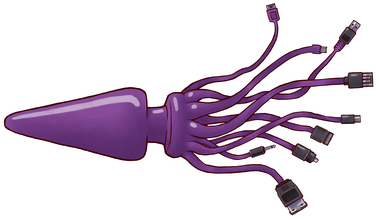
artifact from http://buttplug.io
(594)
2017
Color Coded
Emily Martinez, Cesia Dominguez
We imagine a world with many worlds that center the health and dignity of all bodies. A world where Black and Indigenous people are free. A world where the bodies of all living beings—bodies of plants, animals, water, and land—are cared for through regenerative systems. But we are shaped by the conditions that we live in. And we didn’t arrive at this moment by accident. We can point to the people—mostly cis wealthy white men—who violently implemented their imaginations onto our lived experiences. Their imaginations resulted in a global design of what Phyllis J. Jackson has coined as interlocking systems of domination— patriarchy, capitalism, white supremacy, heteronormativity, ableism, White-Euro Christianity, and nationalism/citizenship. These systems of domination are well practiced in extraction and causing harm.
Color Coded’s work explores how we can inhabit our bodies differently, despite our current harmful world design. […] Because none of us have lived outside of colonization, this is a messy process. We must use our radical imaginations.
2017, Emily Martinez and Cesia Dominguez, https://colorcoded.la/; submitted by Color Coded
Los Angeles
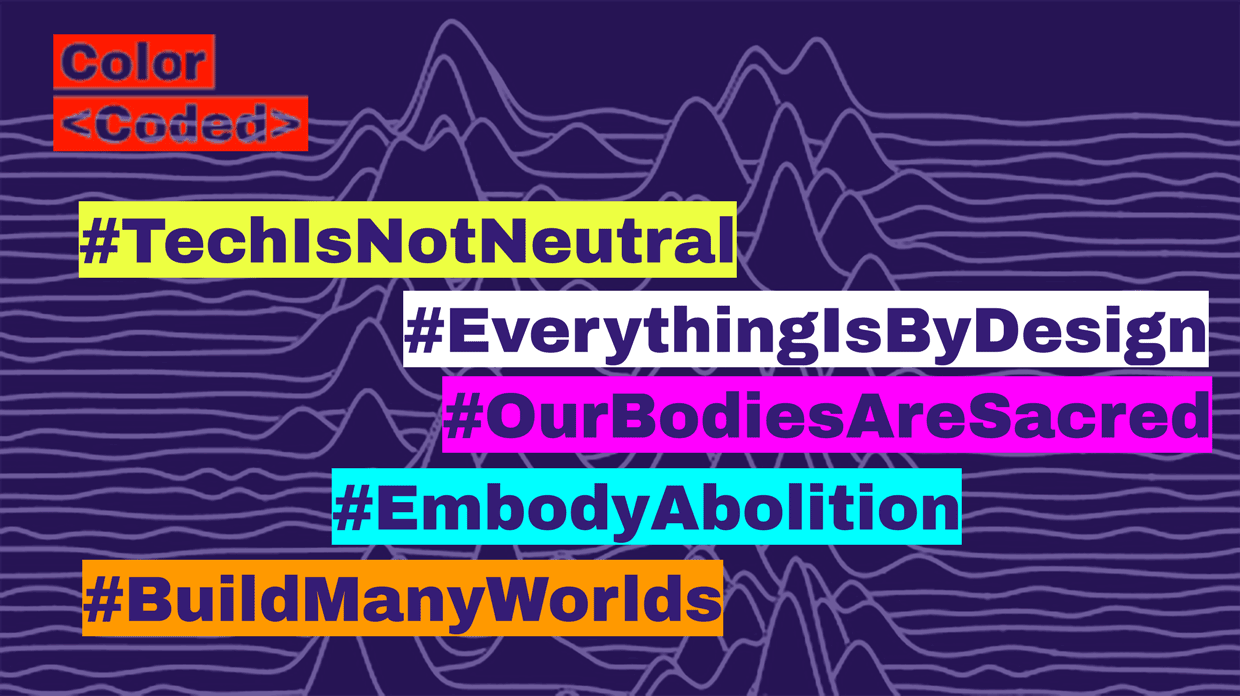
Color Coded banner image for #techisnotneutral
We imagine a world with many worlds that center the health and dignity of all bodies. A world where Black and Indigenous people are free. A world where the bodies of all living beings—bodies of plants, animals, water, and land—are cared for through regenerative systems. But we are shaped by the conditions that we live in. And we didn’t arrive at this moment by accident. We can point to the people—mostly cis wealthy white men—who violently implemented their imaginations onto our lived experiences. Their imaginations resulted in a global design of what Phyllis J. Jackson has coined as interlocking systems of domination— patriarchy, capitalism, white supremacy, heteronormativity, ableism, White-Euro Christianity, and nationalism/citizenship. These systems of domination are well practiced in extraction and causing harm.
Color Coded’s work explores how we can inhabit our bodies differently, despite our current harmful world design. […] Because none of us have lived outside of colonization, this is a messy process. We must use our radical imaginations.
2017, Emily Martinez and Cesia Dominguez, https://colorcoded.la/; submitted by Color Coded
Los Angeles
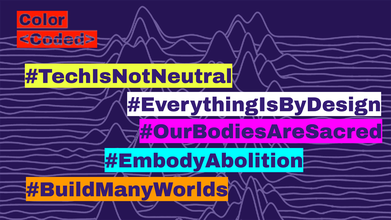
Color Coded banner image for #techisnotneutral
(595)
2017
Whose Knowledge?
Adele Vrana, Anasuya Sengupta, Siko Bouterseç
We are a global campaign to center the knowledge of marginalized communities (the majority of the world) on the internet. 3/4 of the online population of the world today comes from the global South—from Asia, from Africa, from Latin America. And nearly half all women are online. Yet most public knowledge online has so far been written by white men from Europe and North America. To address this, we work particularly with women, people of color, LGBTQI communities, indigenous peoples and others from the global South to build and represent more of all of our own knowledge online. Whose Knowledge? is a radical re-imagining and re-design of the internet, so that together we build and defend an internet of, for and by all.
2017, Adele Vrana, Anasuya Sengupta, and Siko Bouterseç, https://whoseknowledge.org/; referred by Chinmayi Arun
We are a global campaign to center the knowledge of marginalized communities (the majority of the world) on the internet. 3/4 of the online population of the world today comes from the global South—from Asia, from Africa, from Latin America. And nearly half all women are online. Yet most public knowledge online has so far been written by white men from Europe and North America. To address this, we work particularly with women, people of color, LGBTQI communities, indigenous peoples and others from the global South to build and represent more of all of our own knowledge online. Whose Knowledge? is a radical re-imagining and re-design of the internet, so that together we build and defend an internet of, for and by all.
2017, Adele Vrana, Anasuya Sengupta, and Siko Bouterseç, https://whoseknowledge.org/; referred by Chinmayi Arun
(596)
2017
Black Feminism and Post-Cyber Feminism
Akwugo Emejulu, Siana Bangura, Kiyémis, Francesca Sobande
We’re very excited to think through the possibilities of black feminism and black feminist digital spaces. For me, what’s interesting about bringing together these three characters is that they can give us a glimpse of some of the possibilities of black feminist futures, within and beyond the internet. What’s interesting to me about thinking about black feminism within the context of post-cyberfeminism is that it allows us the space to think about and possibly reclaiming the idea of utopia, especially in digital spaces. What’s so interesting about reading anything about the internet at the turn of the last century was this utopian idea of what the internet could offer us, in terms of a new way of thinking about feminism, a new way of thinking beyond gender, a new way of thinking about our politics. And, of course, as we know, none of that happened. These hopeful visions of the internet have collapsed under the weight of industrial-scale racism, sexism, misogyny, and facism. This wasn’t even conceived of in the 90s under Web 1.0. Given the context of a racist and sexist digital capitalism, how can we think of possible radical futures?
2017, Akwugo Emejulu, Siana Bangura, Kiyémis Sobande, and Francesca Sobande (panel presentation, Post-Cyber Feminist International, (556) Institute of Contemporary Arts, London, UK, November 18, 2017); transcript from Akwugo Emejulu, introduction to “Black Feminism and Post-Cyber Feminism,” SoundCloud, audio, 1:09, https://soundcloud.com/icalondon/black-feminism-and-post-cyber
https://archive.ica.art/whats-on/black-feminism-and-post-cyber-feminism
London
We’re very excited to think through the possibilities of black feminism and black feminist digital spaces. For me, what’s interesting about bringing together these three characters is that they can give us a glimpse of some of the possibilities of black feminist futures, within and beyond the internet. What’s interesting to me about thinking about black feminism within the context of post-cyberfeminism is that it allows us the space to think about and possibly reclaiming the idea of utopia, especially in digital spaces. What’s so interesting about reading anything about the internet at the turn of the last century was this utopian idea of what the internet could offer us, in terms of a new way of thinking about feminism, a new way of thinking beyond gender, a new way of thinking about our politics. And, of course, as we know, none of that happened. These hopeful visions of the internet have collapsed under the weight of industrial-scale racism, sexism, misogyny, and facism. This wasn’t even conceived of in the 90s under Web 1.0. Given the context of a racist and sexist digital capitalism, how can we think of possible radical futures?
2017, Akwugo Emejulu, Siana Bangura, Kiyémis Sobande, and Francesca Sobande (panel presentation, Post-Cyber Feminist International, (556) Institute of Contemporary Arts, London, UK, November 18, 2017); transcript from Akwugo Emejulu, introduction to “Black Feminism and Post-Cyber Feminism,” SoundCloud, audio, 1:09, https://soundcloud.com/icalondon/black-feminism-and-post-cyber
https://archive.ica.art/whats-on/black-feminism-and-post-cyber-feminism
London
(597)
2017
Equality Labs
“Equality Labs is an Ambedkarite South Asian progressive power-building organization that uses community research, cultural and political organizing, popular education and digital security to fight the oppressions of caste apartheid, Islamophobia, white supremacy, and religious intolerance. Through these methods, we provide practical tools for South Asian and Indo-Caribbean communities to make new interventions in longstanding systems of oppression and advocate for themselves.” —Equality Labs
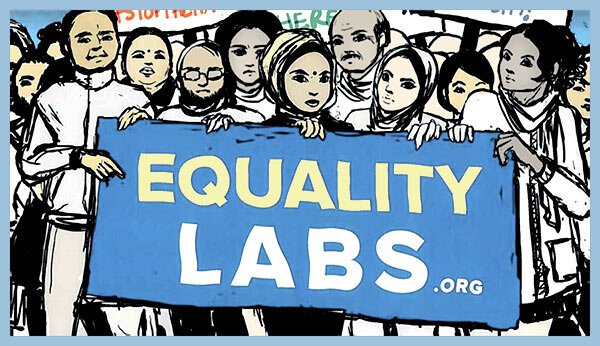
Image from https://www.equalitylabs.org/mission
“Equality Labs is an Ambedkarite South Asian progressive power-building organization that uses community research, cultural and political organizing, popular education and digital security to fight the oppressions of caste apartheid, Islamophobia, white supremacy, and religious intolerance. Through these methods, we provide practical tools for South Asian and Indo-Caribbean communities to make new interventions in longstanding systems of oppression and advocate for themselves.” —Equality Labs

Image from https://www.equalitylabs.org/mission
(598)
2017–
2019
Transfeminist Technologies
Coding Rights, MIT Co-Design Studio
This is a space that provides tools for enabling collective brainstorming on alternative imaginaries surrounding technologies. There is substantial evidence that most of the algorithms that command our digital interactions are biased, particularly towards reproducing what black feminist scholar Patricia Hill Collins calls the matrix of domination (capitalism, heteropatriarchy, white supremacy and settler colonialism). In other words, tech is currently designed in a way that helps maintain the status quo of social inequality and the norms of consumerist, misogynist, racist, ableist, gender binarial and heteropatriarchal society. What would the future look like if we could hack this trend?
2017, Joana Varon, Clara Juliano, and Sasha Costanza-Chock, https://www.transfeministech.codingrights.org/
https://deepdives.in/the-future-is-transfeminist-from-imagination-to-action-6365e097eb22
Brazil and Cambridge, MA
This is a space that provides tools for enabling collective brainstorming on alternative imaginaries surrounding technologies. There is substantial evidence that most of the algorithms that command our digital interactions are biased, particularly towards reproducing what black feminist scholar Patricia Hill Collins calls the matrix of domination (capitalism, heteropatriarchy, white supremacy and settler colonialism). In other words, tech is currently designed in a way that helps maintain the status quo of social inequality and the norms of consumerist, misogynist, racist, ableist, gender binarial and heteropatriarchal society. What would the future look like if we could hack this trend?
2017, Joana Varon, Clara Juliano, and Sasha Costanza-Chock, https://www.transfeministech.codingrights.org/
https://deepdives.in/the-future-is-transfeminist-from-imagination-to-action-6365e097eb22
Brazil and Cambridge, MA
(599)
2017
Our Data Our Selves
Tactical Tech
Our Data Our Selves looks at the use of personal data within informal and formal political processes. The overall project explores how in a digital society, personal data becomes an asset that can be used by different stakeholders to exert control and influence over citizens and civil society. In three interlinked sub-projects, we investigate and address the mechanics, the actors and the strategies behind the mass collection and use of personal data worldwide and the political and social impact it has on our societies.
2017, Tactical Tech, https://ourdataourselves.tacticaltech.org/; referred by Ruth Catlow
Our Data Our Selves looks at the use of personal data within informal and formal political processes. The overall project explores how in a digital society, personal data becomes an asset that can be used by different stakeholders to exert control and influence over citizens and civil society. In three interlinked sub-projects, we investigate and address the mechanics, the actors and the strategies behind the mass collection and use of personal data worldwide and the political and social impact it has on our societies.
2017, Tactical Tech, https://ourdataourselves.tacticaltech.org/; referred by Ruth Catlow
(600)
2017
Data for Black Lives
Yeshimabeit Milner, Lucas Mason-Brown, Max Clermont, Nicole Morris
Data for Black Lives is a movement of activists, organizers, and mathematicians committed to the mission of using data science to create concrete and measurable change in the lives of Black people. Since the advent of computing, big data and algorithms have penetrated virtually every aspect of our social and economic lives. These new data systems have tremendous potential to empower communities of color. Tools like statistical modeling, data visualization, and crowd-sourcing, in the right hands, are powerful instruments for fighting bias, building progressive movements, and promoting civic engagement.
2017, Yeshimabeit Milner, Lucas Mason-Brown, Max Clermont, and Nicole Morris, http://d4bl.org/about.html
Data for Black Lives is a movement of activists, organizers, and mathematicians committed to the mission of using data science to create concrete and measurable change in the lives of Black people. Since the advent of computing, big data and algorithms have penetrated virtually every aspect of our social and economic lives. These new data systems have tremendous potential to empower communities of color. Tools like statistical modeling, data visualization, and crowd-sourcing, in the right hands, are powerful instruments for fighting bias, building progressive movements, and promoting civic engagement.
2017, Yeshimabeit Milner, Lucas Mason-Brown, Max Clermont, and Nicole Morris, http://d4bl.org/about.html
(601)
2017
LasDeSistemas [Systems]
A feminist community of women, lesbians, trans and non-binary people who work in systems in order to make us visible, empower and contain us to transform our workspaces into inclusive places.
We are a transfeminist community of women, lesbians, trans and non-binaries, who work in the technology industry and have as main objectives: to make ourselves visible, empower ourselves, train ourselves, contain ourselves and transform our work spaces into inclusive places.
2017, https://lasdesistemas.org/
https://medium.com/@lasdesistemas
Argentina
A feminist community of women, lesbians, trans and non-binary people who work in systems in order to make us visible, empower and contain us to transform our workspaces into inclusive places.
We are a transfeminist community of women, lesbians, trans and non-binaries, who work in the technology industry and have as main objectives: to make ourselves visible, empower ourselves, train ourselves, contain ourselves and transform our work spaces into inclusive places.
2017, https://lasdesistemas.org/
https://medium.com/@lasdesistemas
Argentina
(602)
2017
Cyborgfeministas
La tecnología no es neutral. Es política. A partir de relaciones desiguales e injustas de poder se diseñan los códigos que gobiernan nuestras vidas. La mayoría de las aplicaciones que usamos, los contenidos que leemos o vemos en Internet están hechos por hombres blancos, heteros y cisgénero (de Sillicon Valley). Ellos copan los espacios donde se toman decisiones sobre el futuro de la red.
Technology is not neutral. It’s political. From unequal and unjust power relations, the codes that govern our lives are designed. Most of the apps we use, the content we read or watch on the Internet is made by white, hetero, and cisgender (Silicon Valley) men. They take over the spaces where decisions are made about the future of the network.
2017, https://cyborgfeminista.tedic.org/cyborfeministas/; submitted by Paola Ricaurte
Paraguay
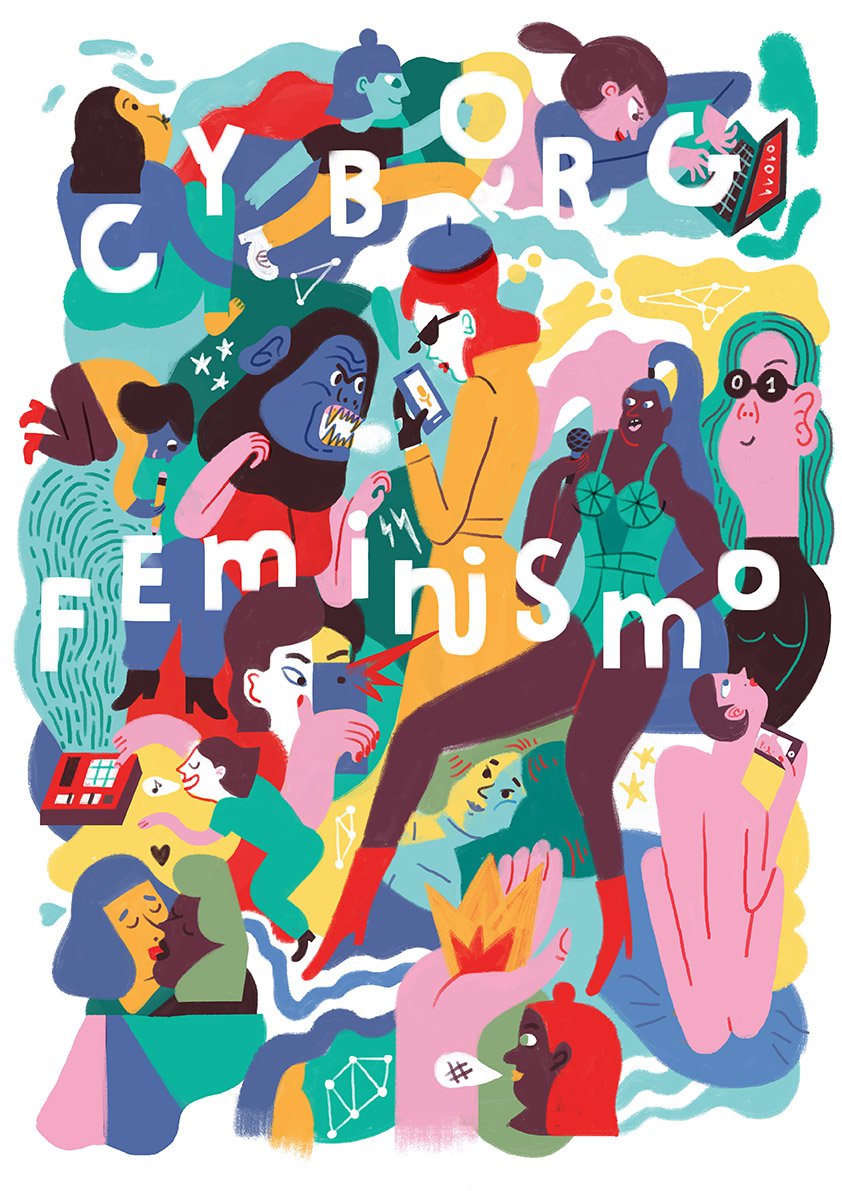
image from https://cyborgfeminista.tedic.org/
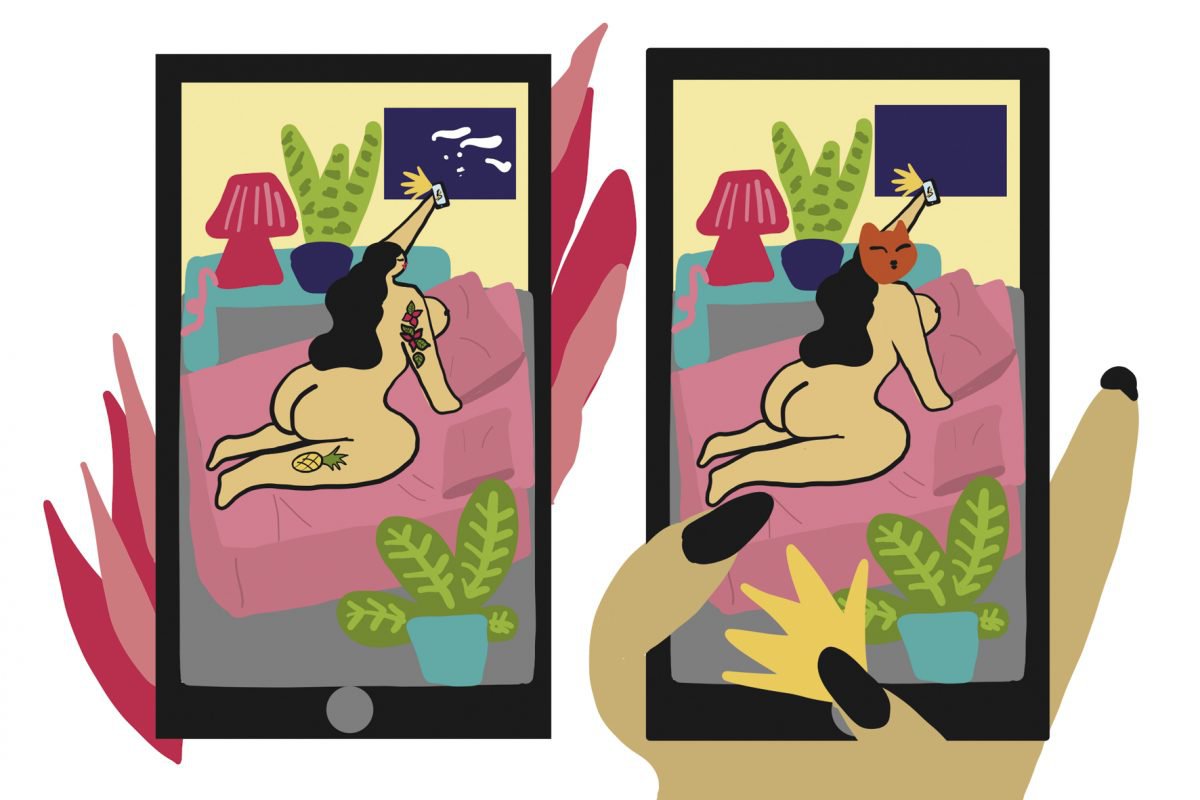
“Sexting”, image from https://cyborgfeminista.tedic.org/sexting-self-care-on-the-internet-sendnudes/
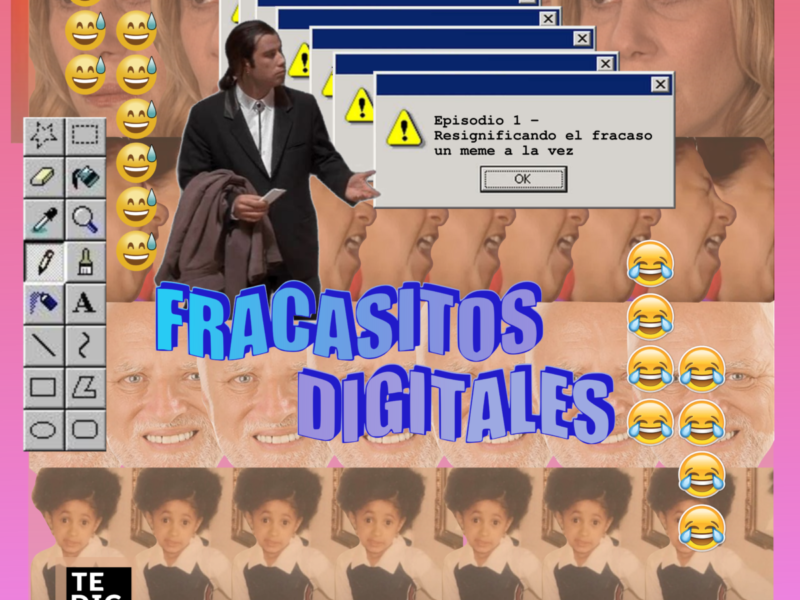
“Fracasitos Digitales”, image from https://cyborgfeminista.tedic.org/fracasitos-digitales/
La tecnología no es neutral. Es política. A partir de relaciones desiguales e injustas de poder se diseñan los códigos que gobiernan nuestras vidas. La mayoría de las aplicaciones que usamos, los contenidos que leemos o vemos en Internet están hechos por hombres blancos, heteros y cisgénero (de Sillicon Valley). Ellos copan los espacios donde se toman decisiones sobre el futuro de la red.
Technology is not neutral. It’s political. From unequal and unjust power relations, the codes that govern our lives are designed. Most of the apps we use, the content we read or watch on the Internet is made by white, hetero, and cisgender (Silicon Valley) men. They take over the spaces where decisions are made about the future of the network.
2017, https://cyborgfeminista.tedic.org/cyborfeministas/; submitted by Paola Ricaurte
Paraguay
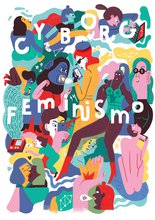
image from https://cyborgfeminista.tedic.org/

“Sexting”, image from https://cyborgfeminista.tedic.org/sexting-self-care-on-the-internet-sendnudes/

“Fracasitos Digitales”, image from https://cyborgfeminista.tedic.org/fracasitos-digitales/
(603)
2017
Vedetas [Stars]
Vedetas é nossa servidora feminista. Ela existe para ajudar grupos feministas nas suas atividades online e aumentar a segurança e autonomia de mulheres na internet. Vedeta é o nome das estruturas tipo casinhas que ficava nas praias, de onde era feita a vigilância da costa. Durante a Guerra de Independência da Bahia, no início do século XIX, uma negra ex-escrava chamada Maria Felipa tomou a Ilha de Itaparica de assalto. Durante algumas semanas, sua tropa feminina esteve em vigília nessas casinhas, derrubando embarcações portuguesas. As mulheres da tropa ficaram conhecidas como vedetas, e são bem populares no imaginário popular de Itaparica, associadas ao canto de capoeira Maria Doze Homens. Maria seria a Maria Felipa, que teria derrubado 12 homens de uma vez.”
Vedetas is our feminist server. It exists to help feminist groups in their online activities and to increase the security and autonomy of women on the internet. Vedeta is the name of the house-like structures that were on the beaches, from where the coast was monitored. During Bahia’s War of Independence, in the early 19th century, a black ex-slave named Maria Felipa took the island of Itaparica by storm. For a few weeks, his female troop was on watch in these houses, knocking down Portuguese vessels. The women of the troop became known as “vedetas,” and are very popular in the popular imagination of Itaparica, associated with the capoeira song Maria Doze Homens. Maria would be Maria Felipa, who would have knocked down 12 men at once.
Brasil
Vedetas é nossa servidora feminista. Ela existe para ajudar grupos feministas nas suas atividades online e aumentar a segurança e autonomia de mulheres na internet. Vedeta é o nome das estruturas tipo casinhas que ficava nas praias, de onde era feita a vigilância da costa. Durante a Guerra de Independência da Bahia, no início do século XIX, uma negra ex-escrava chamada Maria Felipa tomou a Ilha de Itaparica de assalto. Durante algumas semanas, sua tropa feminina esteve em vigília nessas casinhas, derrubando embarcações portuguesas. As mulheres da tropa ficaram conhecidas como vedetas, e são bem populares no imaginário popular de Itaparica, associadas ao canto de capoeira Maria Doze Homens. Maria seria a Maria Felipa, que teria derrubado 12 homens de uma vez.”
Vedetas is our feminist server. It exists to help feminist groups in their online activities and to increase the security and autonomy of women on the internet. Vedeta is the name of the house-like structures that were on the beaches, from where the coast was monitored. During Bahia’s War of Independence, in the early 19th century, a black ex-slave named Maria Felipa took the island of Itaparica by storm. For a few weeks, his female troop was on watch in these houses, knocking down Portuguese vessels. The women of the troop became known as “vedetas,” and are very popular in the popular imagination of Itaparica, associated with the capoeira song Maria Doze Homens. Maria would be Maria Felipa, who would have knocked down 12 men at once.
Brasil
(604)
2017–
2018
Encuentro Internacional de Ciberfeminismo [International Meeting of Cyberfeminism]
El I Encuentro Internacional de Ciberfeminismo es un espacio para encontrarnos entre mujeres, feministas, activistas LGBTI, de Derechos Humanos, ecofeministas y personas que queremos transgredir un espacio y pintarlo de lila y diversidad de colores: la tecnología, el Internet, la incidencia pública. Es un espacio para compartir nuestros saberes, ideas, sentires, aprendizajes sobre el Activismo Digital Feminista y el Ciberfeminismo y también para articularnos y fortalecer las luchas que llevamos por un mundo más equitativo, donde el capitalismo patriarcal, racista y homofóbico no nos quite la alegría.
The First International Meeting of Cyberfeminism is a space to meet among women, feminists, LGBTI activists, human rights activists, ecofeminists and people who want to transgress a space and paint it lilac and a diversity of colors: technology, the Internet, public advocacy. It is a space to share our knowledge, ideas, feelings, learnings about Feminist Digital Activism and Cyberfeminism and also to articulate and strengthen the struggles we lead for a more equitable world, where patriarchal, racist and homophobic capitalism does not take away our joy.
https://web.archive.org/web/20170826015922/http://ciberfeminismo.elchuro.org:80/
Ecuador
El I Encuentro Internacional de Ciberfeminismo es un espacio para encontrarnos entre mujeres, feministas, activistas LGBTI, de Derechos Humanos, ecofeministas y personas que queremos transgredir un espacio y pintarlo de lila y diversidad de colores: la tecnología, el Internet, la incidencia pública. Es un espacio para compartir nuestros saberes, ideas, sentires, aprendizajes sobre el Activismo Digital Feminista y el Ciberfeminismo y también para articularnos y fortalecer las luchas que llevamos por un mundo más equitativo, donde el capitalismo patriarcal, racista y homofóbico no nos quite la alegría.
The First International Meeting of Cyberfeminism is a space to meet among women, feminists, LGBTI activists, human rights activists, ecofeminists and people who want to transgress a space and paint it lilac and a diversity of colors: technology, the Internet, public advocacy. It is a space to share our knowledge, ideas, feelings, learnings about Feminist Digital Activism and Cyberfeminism and also to articulate and strengthen the struggles we lead for a more equitable world, where patriarchal, racist and homophobic capitalism does not take away our joy.
https://web.archive.org/web/20170826015922/http://ciberfeminismo.elchuro.org:80/
Ecuador
(605)
2017
Técnicas Rudas [Rough Techniques]
Tacol Peña
Técnicas Rudas es una organización que busca aportar a los movimientos sociales y a la defensa de los derechos humanos a través de consultorías de fortalecimiento institucional, desarrollo de proyectos, investigación estratégica, y tecnología. Nuestro trabajo integra la conciencia de género y da prioridad a las iniciativas de base. A largo plazo, esperamos ver a organizaciones sociales autónomas y sustentables salvaguardando los derechos humanos y protegiendo la autodeterminación de comunidades locales.
Técnicas Rudas is a social enterprise that aims to contribute to social movements and human rights defense through technology, strategic research, project development and institutional strengthening. Our approach integrates an intersectional gender lens and prioritizes grassroots initiatives. Long term, we hope to see autonomous, sustainable social organizations safeguarding human rights and protecting the self-determination of local communities.
2017, Tacol Peña, http://www.tecnicasrudas.org/
Mexico
Técnicas Rudas es una organización que busca aportar a los movimientos sociales y a la defensa de los derechos humanos a través de consultorías de fortalecimiento institucional, desarrollo de proyectos, investigación estratégica, y tecnología. Nuestro trabajo integra la conciencia de género y da prioridad a las iniciativas de base. A largo plazo, esperamos ver a organizaciones sociales autónomas y sustentables salvaguardando los derechos humanos y protegiendo la autodeterminación de comunidades locales.
Técnicas Rudas is a social enterprise that aims to contribute to social movements and human rights defense through technology, strategic research, project development and institutional strengthening. Our approach integrates an intersectional gender lens and prioritizes grassroots initiatives. Long term, we hope to see autonomous, sustainable social organizations safeguarding human rights and protecting the self-determination of local communities.
2017, Tacol Peña, http://www.tecnicasrudas.org/
Mexico
(606)
2017
EROTICS South Asia Exploratory Research: Sex, Rights and the Internet
Bishakha Datta, Smita Vanniyar, Jasmine Lovely George, Neha Mathews, Rachel Bali, Zahra Adamjee Indu Nepal, Jyotsna Maskay, Shiwa Karmacharya, Shaun Kirven, P.M. Deshapriya, J.M. Mendis Shermal Wijewardene, Subha Wijesiriwardena, hvale vale
“Within months of the immense popularity came a headache,” wrote two technology journalists. “Pornography.” At 2:00 a.m. one night, the telecom minister called the ISP head. He asked in a very unhappy tone “Yeh kya ashleelta laye ho?” (What is this obscenity you have brought), referring to the pornography that came with access. A women’s rights group protested outside the telecom operator’s office. “They wanted people to show them the internet so they could burn it down.”
2017, Bishakha Datta, Smita Vanniyar, Jasmine Lovely George, Neha Mathews, Rachel Bali, Zahra Adamjee Indu Nepal, Jyotsna Maskay, Shiwa Karmacharya, Shaun Kirven, P.M. Deshapriya, J.M. Mendis Shermal Wijewardene, Subha Wijesiriwardena, and hvale vale (Melville, South Africa: Association for Progressive Communications, 2017); excerpt p. 25
https://www.apc.org/sites/default/files/Erotics_1_FIND.pdf
India, Nepal, Sri Lanka
“Within months of the immense popularity came a headache,” wrote two technology journalists. “Pornography.” At 2:00 a.m. one night, the telecom minister called the ISP head. He asked in a very unhappy tone “Yeh kya ashleelta laye ho?” (What is this obscenity you have brought), referring to the pornography that came with access. A women’s rights group protested outside the telecom operator’s office. “They wanted people to show them the internet so they could burn it down.”
2017, Bishakha Datta, Smita Vanniyar, Jasmine Lovely George, Neha Mathews, Rachel Bali, Zahra Adamjee Indu Nepal, Jyotsna Maskay, Shiwa Karmacharya, Shaun Kirven, P.M. Deshapriya, J.M. Mendis Shermal Wijewardene, Subha Wijesiriwardena, and hvale vale (Melville, South Africa: Association for Progressive Communications, 2017); excerpt p. 25
https://www.apc.org/sites/default/files/Erotics_1_FIND.pdf
India, Nepal, Sri Lanka
(607)
2017
#AncestralTech
Color Coded, Agua Dulce
Plant and flower bundles can assist in healing for emotional, spiritual, and psychological bodies. Flower and plant bundles are an invitation to practice reciprocity with our Mother Earth and each other. In our first #AncestralTech workshop, facilitated by Agua Dulce Healing, we explored how the Spirit of the flowers and herbs can heal us through bundle making. Workshop participants learned about the Spirit properties of each plant, as well as how we can call upon the plants to assist us in activating our intentions. Participants were also invited to create their own bundle to take home.
2017, Color Coded and Agua Dulce, September 15, 2017, https://colorcoded.la/workshops-archive/2018/3/4/ancestraltech
Los Angeles
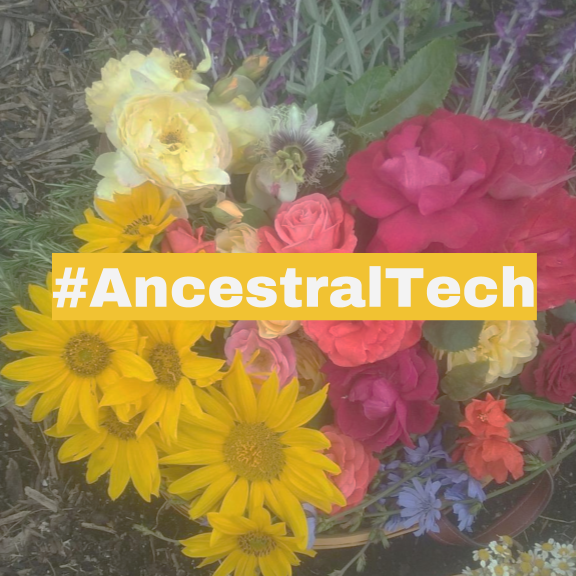
cover image for #AncestralTech by Color Coded
Plant and flower bundles can assist in healing for emotional, spiritual, and psychological bodies. Flower and plant bundles are an invitation to practice reciprocity with our Mother Earth and each other. In our first #AncestralTech workshop, facilitated by Agua Dulce Healing, we explored how the Spirit of the flowers and herbs can heal us through bundle making. Workshop participants learned about the Spirit properties of each plant, as well as how we can call upon the plants to assist us in activating our intentions. Participants were also invited to create their own bundle to take home.
2017, Color Coded and Agua Dulce, September 15, 2017, https://colorcoded.la/workshops-archive/2018/3/4/ancestraltech
Los Angeles

cover image for #AncestralTech by Color Coded
(608)
2017
New Brazilian Feminisms and Online Networks: Cyberfeminism, Protest and the Female “Arab Spring”
Carolina Matos
In the last decades, the region of Latin America has been through many changes, with the reduction of inequality levels and a political trend which has seen the election of female politicians throughout the continent, including a revival of gender politics and feminist movements. Countries like Brazil are still home to gender discrimination and inequality, with high levels of domestic violence towards women, low levels of political representation, a culture of machismo and the predominance still of stereotypical gender representations in the media. Questions asked include how the media can better contribute to assist in gender development and nation-building. How can online platforms make a difference? This article provides a critical summary of feminist theoretical perspectives on the potential of online communications for the advancement of women’s rights, further providing a brief case study of contemporary Brazilian feminism and the mobilization around women’s rights, particularly in 2015.
2017, Carolina Matos, International Sociology 32, no. 2 (2017): pp. 417–434; excerpt from abstract
https://doi.org/10.1177/0268580917694971
In the last decades, the region of Latin America has been through many changes, with the reduction of inequality levels and a political trend which has seen the election of female politicians throughout the continent, including a revival of gender politics and feminist movements. Countries like Brazil are still home to gender discrimination and inequality, with high levels of domestic violence towards women, low levels of political representation, a culture of machismo and the predominance still of stereotypical gender representations in the media. Questions asked include how the media can better contribute to assist in gender development and nation-building. How can online platforms make a difference? This article provides a critical summary of feminist theoretical perspectives on the potential of online communications for the advancement of women’s rights, further providing a brief case study of contemporary Brazilian feminism and the mobilization around women’s rights, particularly in 2015.
2017, Carolina Matos, International Sociology 32, no. 2 (2017): pp. 417–434; excerpt from abstract
https://doi.org/10.1177/0268580917694971
(609)
2017
Cyberfeminism, Iranian Style: Online Feminism in Post-2009 Iran
K. Soraya Batmanghelichi, Leila Mouri
[We] contend that the medium of cyberfeminism as it is expressed in Iran does not neatly conform to Euro-American feminist theories on cybertechnology, which will be elaborated later; cyberfeminism of the Iranian variety does not comment on technology’s role in creating gender hierarchies in Iranian society, nor does it encourage women to engage with new media technologies to dismantle gender inequalities. In many respects, the Internet is viewed as a gender-neutral space and platform upon which feminist messages can be broadcast with less government surveillance and interference than in “real” (not digital) spaces. Many Iranian feminists emphasize the positive and empowering aspects of this new technology for conveying feminist ideas and raising gender awareness. Cyberspace, and the digital tools used to access it, offer a wide public forum for women’s activists to broadcast rights-based campaigns originating from and for Iran. As a key example, for many Iranian women, the medium of cyberfeminism not only allows access and engagement with domestic and transnational debates on gender equality issues and anti-discriminatory legislation, but also provides a space in which to narrate personal stories and exchange views on taboo-laden subjects such as sexuality, divorce, questioning hejab, and religious teachings.
2017, K. Soraya Batmanghelichi and Leila Mouri, in “Middle Eastern Media,” ed. Eylem Atakav, special issue, Feminist Media Histories 3, no. 1 (Winter 2017): pp. 50–80; excerpt p. 52
https://doi.org/10.1525/fmh.2017.3.1.50 https://www.are.na/block/7920769
[We] contend that the medium of cyberfeminism as it is expressed in Iran does not neatly conform to Euro-American feminist theories on cybertechnology, which will be elaborated later; cyberfeminism of the Iranian variety does not comment on technology’s role in creating gender hierarchies in Iranian society, nor does it encourage women to engage with new media technologies to dismantle gender inequalities. In many respects, the Internet is viewed as a gender-neutral space and platform upon which feminist messages can be broadcast with less government surveillance and interference than in “real” (not digital) spaces. Many Iranian feminists emphasize the positive and empowering aspects of this new technology for conveying feminist ideas and raising gender awareness. Cyberspace, and the digital tools used to access it, offer a wide public forum for women’s activists to broadcast rights-based campaigns originating from and for Iran. As a key example, for many Iranian women, the medium of cyberfeminism not only allows access and engagement with domestic and transnational debates on gender equality issues and anti-discriminatory legislation, but also provides a space in which to narrate personal stories and exchange views on taboo-laden subjects such as sexuality, divorce, questioning hejab, and religious teachings.
2017, K. Soraya Batmanghelichi and Leila Mouri, in “Middle Eastern Media,” ed. Eylem Atakav, special issue, Feminist Media Histories 3, no. 1 (Winter 2017): pp. 50–80; excerpt p. 52
https://doi.org/10.1525/fmh.2017.3.1.50 https://www.are.na/block/7920769
(610)
2017
n Hypotheses of Post-Cyber Feminism + Laboria Cuboniks: Update, Updating, Updated
Helen Kaplinsky, Annie Goh, Legacy Russell, Diana McCarty, Faith Wilding
It’s twenty years since the First Cyberfeminist International. (102) Cyberfeminism has been described by Virginia Barratt of Australian artist collective VNS Matrix as anti-genealogical, anti-authorial, and a hostile mucus, never faithful to any origins. Of course, the Old Boys Networks’s 100 Anti-Theses which was developed during the First Cyberfeminist International also follows this. How then can we begin to describe the story of the people on stage and the wider set of actors without falling into a reductive set of genealogies? Our project is to challenge the structures of this canonization of cyberfeminism, a canonization that they sought to disassociate with. As Helen Hester says, the techno-material conditions have changed considerably over the past twenty years, so we must acknowledge and learn from and care for this past together. This event is about tracing the collective and contested typology of our shifting conditions and potential strategies.
2017, Helen Kaplinsky, Annie Goh, Legacy Russell, Diana McCarty, and Faith Wilding (panel presentation, Post-Cyber Feminist International, Institute of Contemporary Arts, London, UK, November 15, 2017); transcript from Rosalie Doubal, introduction to “N Hypothesis of Post-Cyber Feminism,” SoundCloud, audio, 0:23, https://soundcloud.com/icalondon/n-hypotheses-of-post-cyber
It’s twenty years since the First Cyberfeminist International. (102) Cyberfeminism has been described by Virginia Barratt of Australian artist collective VNS Matrix as anti-genealogical, anti-authorial, and a hostile mucus, never faithful to any origins. Of course, the Old Boys Networks’s 100 Anti-Theses which was developed during the First Cyberfeminist International also follows this. How then can we begin to describe the story of the people on stage and the wider set of actors without falling into a reductive set of genealogies? Our project is to challenge the structures of this canonization of cyberfeminism, a canonization that they sought to disassociate with. As Helen Hester says, the techno-material conditions have changed considerably over the past twenty years, so we must acknowledge and learn from and care for this past together. This event is about tracing the collective and contested typology of our shifting conditions and potential strategies.
2017, Helen Kaplinsky, Annie Goh, Legacy Russell, Diana McCarty, and Faith Wilding (panel presentation, Post-Cyber Feminist International, Institute of Contemporary Arts, London, UK, November 15, 2017); transcript from Rosalie Doubal, introduction to “N Hypothesis of Post-Cyber Feminism,” SoundCloud, audio, 0:23, https://soundcloud.com/icalondon/n-hypotheses-of-post-cyber
(611)
2017
“a”, not “I” / #ævtarperform #deprogram
Cibelle Cavalli Bastos
What if your body was a mere geometric shape
Unmarked Undressed of the gaze of another
Undressed of your own gaze that has been programmed by the world
That your so called intimate parts had non-conceived shapes
That what you call a breast or a torso didn’t have that name
That it was just another random part of your own architecture
2017, Cibelle Cavalli Bastos, organizer (gathering, Post-Cyber Feminist International, (556) Institute of Contemporary Arts, London, UK, November 16, 2017); excerpt from ““a”, not “I” / #ævtarperform #deprogram,” Institute of Contemporary Arts, November 16, 2017, https://archive.ica.art/whats-on/a-not-i-aevtarperform-deprogram
London
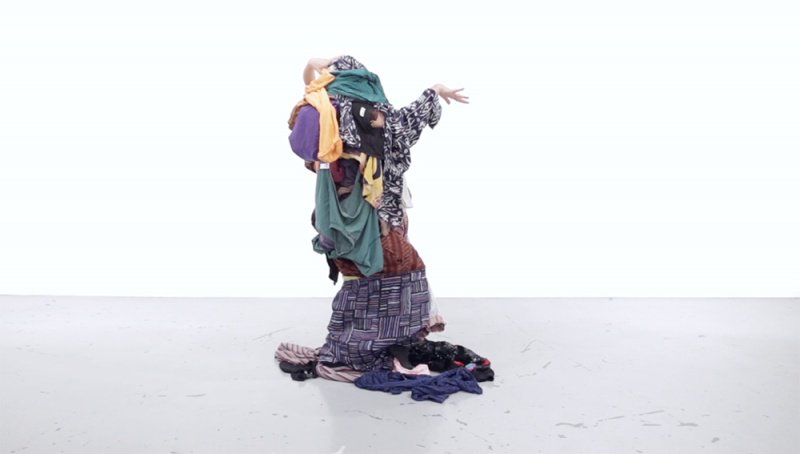
“Cibelle Cavalli Bastos, “a”, not “I” (2017). Courtesy the artist”, image from https://archive.ica.art/whats-on/a-not-i-aevtarperform-deprogram
What if your body was a mere geometric shape
Unmarked Undressed of the gaze of another
Undressed of your own gaze that has been programmed by the world
That your so called intimate parts had non-conceived shapes
That what you call a breast or a torso didn’t have that name
That it was just another random part of your own architecture
2017, Cibelle Cavalli Bastos, organizer (gathering, Post-Cyber Feminist International, (556) Institute of Contemporary Arts, London, UK, November 16, 2017); excerpt from ““a”, not “I” / #ævtarperform #deprogram,” Institute of Contemporary Arts, November 16, 2017, https://archive.ica.art/whats-on/a-not-i-aevtarperform-deprogram
London
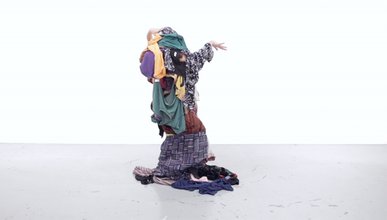
“Cibelle Cavalli Bastos, “a”, not “I” (2017). Courtesy the artist”, image from https://archive.ica.art/whats-on/a-not-i-aevtarperform-deprogram
(612)
2017
Glitch Shorts
Legacy Russell
“This screening programme features short films by artists Salome Asega, Ain Bailey, Anaïs Duplan, Caspar Heinemann, shawné michaelain holloway, Zarina Muhammad, E. Jane, Jenn Nkiru, Tabita Rezaire and Victoria Sin. The screening is followed by a discussion on Glitch Feminism [page "Glitch Feminism" not found] led by curator Legacy Russell with Tamar Clarke-Brown, E. Jane and Shira Jeczmien. [...] Glitch Shorts is curated by Legacy Russell as part of an evening resistance in celebration of radical sound, bodies and nightlife, brought to you AFK [away from keyboard] by #GlitchFeminism.” —Excerpt from ICA, part of Post-Cyber Feminist International (x)
“The glitch posits: ‘One is not born, but rather becomes, a body.’ The digital is a vessel through which our glitch ‘becoming’ realises itself, and through which we can reprogramme binary gender coding. Our ‘glitch’ is a correction to the machine—fuck hegemonic coding! USURP THE BODY—BECOME YOUR AVATAR!” —Legacy Russell, Glitch Feminism excerpt
https://archive.ica.art/whats-on/glitch-shorts
London

“Tabita Rezaire, Peaceful Warrior (2015). Courtesy the artist”, image from https://archive.ica.art/whats-on/glitch-shorts
“This screening programme features short films by artists Salome Asega, Ain Bailey, Anaïs Duplan, Caspar Heinemann, shawné michaelain holloway, Zarina Muhammad, E. Jane, Jenn Nkiru, Tabita Rezaire and Victoria Sin. The screening is followed by a discussion on Glitch Feminism [page "Glitch Feminism" not found] led by curator Legacy Russell with Tamar Clarke-Brown, E. Jane and Shira Jeczmien. [...] Glitch Shorts is curated by Legacy Russell as part of an evening resistance in celebration of radical sound, bodies and nightlife, brought to you AFK [away from keyboard] by #GlitchFeminism.” —Excerpt from ICA, part of Post-Cyber Feminist International (x)
“The glitch posits: ‘One is not born, but rather becomes, a body.’ The digital is a vessel through which our glitch ‘becoming’ realises itself, and through which we can reprogramme binary gender coding. Our ‘glitch’ is a correction to the machine—fuck hegemonic coding! USURP THE BODY—BECOME YOUR AVATAR!” —Legacy Russell, Glitch Feminism excerpt
https://archive.ica.art/whats-on/glitch-shorts
London

“Tabita Rezaire, Peaceful Warrior (2015). Courtesy the artist”, image from https://archive.ica.art/whats-on/glitch-shorts
(613)
2017
What Can Post-Cyber Feminism Do For Reproductive Justice?
Eleanor Penny, Joni Cohen, Shu Lea Cheang, Mary Maggic
We are sitting at the crux of a feminist revolution and the rise of the robots. We are here today to ask what Post-Cyber Feminism can do for reproductive justice. How the approaches and theoretical frameworks of both the examinations of reproductive justice and the examinations of Post-Cyber Feminism can talk to each other and give us a set of demands and transformative frameworks. The heuristics of our schools of feminist thought have really failed to adequately provide either a comprehensive critique of injustice for the reproductive freedoms that people experience, or really a utopian horizon for what reproductive justice might look like. If one solely fixates on the boardroom, we raise the more urgent politics of what happens in the bedroom and, these days, in the chatroom. What do we mean by reproduction? There’s the obvious sense in which this has to do with making babies. But we need to think about it as the production of life more generally, not just the work of gestating and producing a fetus, but as the continuous work of keeping ourselves and each other alive.
2017, Eleanor Penny, Joni Cohen, Shu Lea Cheang, and Mary Maggic (panel presentation, Post-Cyber Feminist International, Institute of Contemporary Arts, London, UK, November 18, 2017); transcript from Eleanor Penny, introduction to “What Can Post-Cyber Feminism Do for Reproductive Justice,” SoundCloud, audio, 3:02, https://soundcloud.com/icalondon/what-can-post-cyber-feminism#t=1:06:01
https://archive.ica.art/whats-on/what-can-post-cyber-feminism-do-reproductive-justice
London
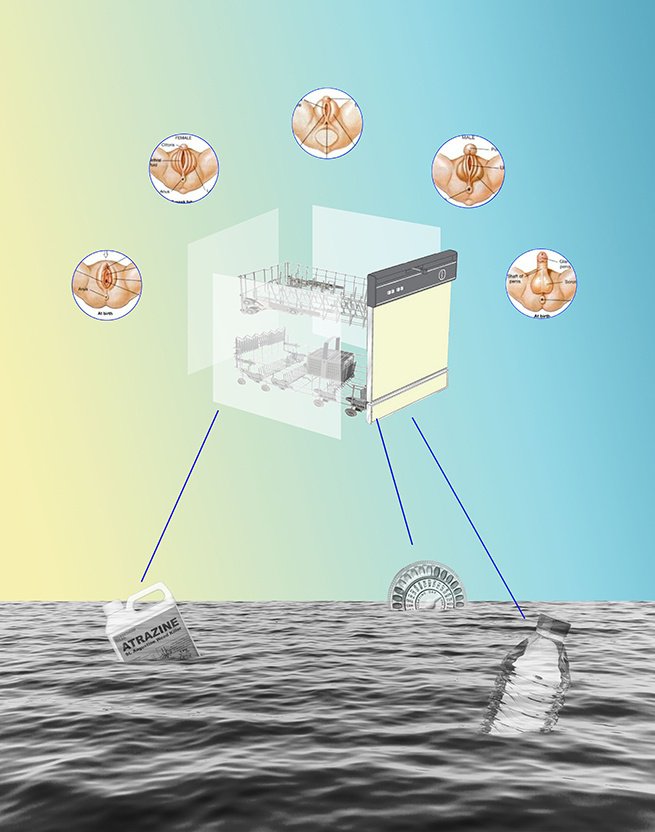
“Mary Maggic, Plastic Extractor. Courtesy the artist”, image from https://archive.ica.art/whats-on/what-can-post-cyber-feminism-do-reproductive-justice
We are sitting at the crux of a feminist revolution and the rise of the robots. We are here today to ask what Post-Cyber Feminism can do for reproductive justice. How the approaches and theoretical frameworks of both the examinations of reproductive justice and the examinations of Post-Cyber Feminism can talk to each other and give us a set of demands and transformative frameworks. The heuristics of our schools of feminist thought have really failed to adequately provide either a comprehensive critique of injustice for the reproductive freedoms that people experience, or really a utopian horizon for what reproductive justice might look like. If one solely fixates on the boardroom, we raise the more urgent politics of what happens in the bedroom and, these days, in the chatroom. What do we mean by reproduction? There’s the obvious sense in which this has to do with making babies. But we need to think about it as the production of life more generally, not just the work of gestating and producing a fetus, but as the continuous work of keeping ourselves and each other alive.
2017, Eleanor Penny, Joni Cohen, Shu Lea Cheang, and Mary Maggic (panel presentation, Post-Cyber Feminist International, Institute of Contemporary Arts, London, UK, November 18, 2017); transcript from Eleanor Penny, introduction to “What Can Post-Cyber Feminism Do for Reproductive Justice,” SoundCloud, audio, 3:02, https://soundcloud.com/icalondon/what-can-post-cyber-feminism#t=1:06:01
https://archive.ica.art/whats-on/what-can-post-cyber-feminism-do-reproductive-justice
London
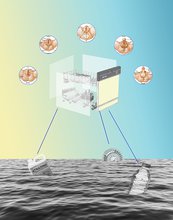
“Mary Maggic, Plastic Extractor. Courtesy the artist”, image from https://archive.ica.art/whats-on/what-can-post-cyber-feminism-do-reproductive-justice
(614)
2017
Sonic Cyberfeminisms Reading Group: Intersectional Approaches
Annie Goh, Marie Thompson
Many of the ideas of cyberspace, derived from cybernetics, emphasized its non-linear, non-hierarchical and rhizomatic structures. Yet the puzzle then, as it is now, is how these “new” and “more democratic” forms are situated within the old dominant order of white supremacist, imperialist, capitalist hetero-patriarchy (to use bell hooks’s augmented phrase). The sonic has been theorized as both a way to trace and listen to events to gain different understandings of them as well as a potentially powerful force which can move and affect bodies, modulate atmospheres and effect transformation.
Moved by the recent debates to tackle gendered exclusions and actions to improve gender representation in the fields of electronic music, audio production and sound arts, Sonic Cyberfeminisms seeks to carve out a critical space to reflect upon which disparities are revealed and which feminist agendas are being pursued. Revisiting Faith Wilding’s question of the political strategy of cyberfeminism, it is timely to ask: where is the feminism in sonic cyberfeminism? Taking into account the plurality of agendas, methods, perspectives and priorities, we might further ask: which feminisms are at work in sonic cyberfeminisms?
2017, Annie Goh and Marie Thompson, organizer (reading group, Post-Cyber Feminist International, (x) Institute of Contemporary Arts, London, UK, November 19, 2017); excerpt from “Sonic Cyberfeminisms Reading Group: Intersectional Approaches,” Institute of Contemporary Arts, https://archive.ica.art/whats-on/sonic-cyberfeminisms-reading-group-intersectional-approaches
London
Many of the ideas of cyberspace, derived from cybernetics, emphasized its non-linear, non-hierarchical and rhizomatic structures. Yet the puzzle then, as it is now, is how these “new” and “more democratic” forms are situated within the old dominant order of white supremacist, imperialist, capitalist hetero-patriarchy (to use bell hooks’s augmented phrase). The sonic has been theorized as both a way to trace and listen to events to gain different understandings of them as well as a potentially powerful force which can move and affect bodies, modulate atmospheres and effect transformation.
Moved by the recent debates to tackle gendered exclusions and actions to improve gender representation in the fields of electronic music, audio production and sound arts, Sonic Cyberfeminisms seeks to carve out a critical space to reflect upon which disparities are revealed and which feminist agendas are being pursued. Revisiting Faith Wilding’s question of the political strategy of cyberfeminism, it is timely to ask: where is the feminism in sonic cyberfeminism? Taking into account the plurality of agendas, methods, perspectives and priorities, we might further ask: which feminisms are at work in sonic cyberfeminisms?
2017, Annie Goh and Marie Thompson, organizer (reading group, Post-Cyber Feminist International, (x) Institute of Contemporary Arts, London, UK, November 19, 2017); excerpt from “Sonic Cyberfeminisms Reading Group: Intersectional Approaches,” Institute of Contemporary Arts, https://archive.ica.art/whats-on/sonic-cyberfeminisms-reading-group-intersectional-approaches
London
(615)
2017
Post-Cyber Feminist International 2017
Joanna Walsh
Reflecting on the First Cyberfeminist International in 1997, Faith Wilding asked: “Where is the Feminism in Cyberfeminism?” One might just as well ask: “Where is the cyber?” The answer is in “post,” at least post the hopes of the ‘90s: “Utopia in digital spaces … mostly it didn’t happen,” said Akwugo Emejulu. Black feminists in particular talked about being AFK (Away From Keyboard): “You have to always be visible and productive or else you’re invisible,” (Siana Bangura). As E. Jane whose “primary residence is cyberspace” commented, “you can’t drink water and you can’t breathe air on the internet.” Sollfrank described how the Old Boys Network began as a strategy for sharing Documenta’s artspace, with the offline organizational labor of social reproduction at its heart. Sollfrank’s primary question remains “Where are we?” Diana McCarty advised practicing an “invite your neighbors’ principle, designed to enable participation by everyone in your immediate meatspace. Wilding declared: “The most important thing is to turn up.”
2017, Joanna Walsh, Frieze, November 28, 2017, https://www.frieze.com/article/post-cyber-feminist-international-2017
Reflecting on the First Cyberfeminist International in 1997, Faith Wilding asked: “Where is the Feminism in Cyberfeminism?” One might just as well ask: “Where is the cyber?” The answer is in “post,” at least post the hopes of the ‘90s: “Utopia in digital spaces … mostly it didn’t happen,” said Akwugo Emejulu. Black feminists in particular talked about being AFK (Away From Keyboard): “You have to always be visible and productive or else you’re invisible,” (Siana Bangura). As E. Jane whose “primary residence is cyberspace” commented, “you can’t drink water and you can’t breathe air on the internet.” Sollfrank described how the Old Boys Network began as a strategy for sharing Documenta’s artspace, with the offline organizational labor of social reproduction at its heart. Sollfrank’s primary question remains “Where are we?” Diana McCarty advised practicing an “invite your neighbors’ principle, designed to enable participation by everyone in your immediate meatspace. Wilding declared: “The most important thing is to turn up.”
2017, Joanna Walsh, Frieze, November 28, 2017, https://www.frieze.com/article/post-cyber-feminist-international-2017
(616)
2017
Flooding the Museum: An Interview with Cornelia Sollfrank
Cornelia Sollfrank, Michael Connor
I just reread Sadie Plant and reread also VNS Matrix and reviews of that because I published an article on cyberfeminism, which is called “Revisiting The Future” because [in the 1990s] cyberfeminism was called the “feminism for the 21st century.” Having arrived in the 21st century, what actually happened to this feminism of the 21st century? It seemed to have gone nowhere or it’s not so obvious where it has gone.
In 1997, we founded the Old Boys Network, the cyberfeminist alliance in Berlin. The Old Boys Network organized the First Cyberfeminist International at the documenta X Hybrid WorkSpace. Our idea was to appropriate cyberfeminism and free it from this essentialist load of the early phase and open it up to include many other feminist aspects, which were also, for example, more materialistic. Economic considerations, the material basis of the internet, and many other aspects that were not present in early cyberfeminism.
2017, Cornelia Sollfrank, interview by Michael Connor, Rhizome, March 9, 2017, https://rhizome.org/editorial/2017/mar/09/flooding-the-museum/
I just reread Sadie Plant and reread also VNS Matrix and reviews of that because I published an article on cyberfeminism, which is called “Revisiting The Future” because [in the 1990s] cyberfeminism was called the “feminism for the 21st century.” Having arrived in the 21st century, what actually happened to this feminism of the 21st century? It seemed to have gone nowhere or it’s not so obvious where it has gone.
In 1997, we founded the Old Boys Network, the cyberfeminist alliance in Berlin. The Old Boys Network organized the First Cyberfeminist International at the documenta X Hybrid WorkSpace. Our idea was to appropriate cyberfeminism and free it from this essentialist load of the early phase and open it up to include many other feminist aspects, which were also, for example, more materialistic. Economic considerations, the material basis of the internet, and many other aspects that were not present in early cyberfeminism.
2017, Cornelia Sollfrank, interview by Michael Connor, Rhizome, March 9, 2017, https://rhizome.org/editorial/2017/mar/09/flooding-the-museum/
(617)
2017
NeuroSpeculative AfroFeminism (NSAF)
Hyphen Labs
NeuroSpeculative AfroFeminism (NSAF) is an award winning three-part digital narrative that sits at the intersection of product design, virtual reality, and neuroscience. Inspired by the lack of multidimensional representations of black women in technology. The NSAF products range from sunblock for traveling through the multiverse, to earrings embedded with cameras that offer protection and visibility, the VR experience is set in a Neurocosmetology lab where black women are pioneering techniques of brain optimization and cognitive enhancement. Finally, scientific research explores the neurological and physiological impact of showing images of empowered black women as well as content made for and by women of color.
2017, Hyphen Labs, http://www.hyphen-labs.com/nsaf.html

Image from http://www.hyphen-labs.com/nsaf.html

still 00:11, https://vimeo.com/208264686

still 00:19, https://vimeo.com/208264686
NeuroSpeculative AfroFeminism (NSAF) is an award winning three-part digital narrative that sits at the intersection of product design, virtual reality, and neuroscience. Inspired by the lack of multidimensional representations of black women in technology. The NSAF products range from sunblock for traveling through the multiverse, to earrings embedded with cameras that offer protection and visibility, the VR experience is set in a Neurocosmetology lab where black women are pioneering techniques of brain optimization and cognitive enhancement. Finally, scientific research explores the neurological and physiological impact of showing images of empowered black women as well as content made for and by women of color.
2017, Hyphen Labs, http://www.hyphen-labs.com/nsaf.html
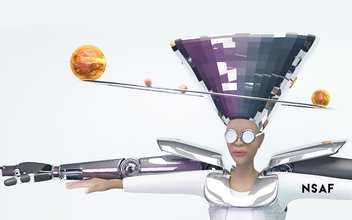
Image from http://www.hyphen-labs.com/nsaf.html

still 00:11, https://vimeo.com/208264686

still 00:19, https://vimeo.com/208264686
(618)
2017
Mifepristone Vending Machine for All
Femidangdang (페미당당)
“2017년 11월 19일 페미당당 회원들은 서울 중구 서울시립 미술관 앞에 가상의 ‘미프진 자판기’를 설치했다. 버튼을 누르면 미프진이 들어있는 박스가 나오지만, 실제 내용물은 젤리와 비타민, 미프진을 설명하는 소책자였다. 김예지 활동가는 “이 퍼포먼스는 ‘남자들이 임신, 출산을 했다면 낙태약을 자판기에서도 살 수 있었을 거야’라는 한 미국 드라마의 여자 주인공 대사에서 아이디어를 얻었다”며 “외신에도 소개되면서 페미당당을 세계에 알리는 계기가 됐다”고 설명했다.” —홍인기
“On November 19, 2017, members of the Fedang Party installed a virtual ‘Mipjin Vending Machine’ in front of the Seoul Museum of Art in Jung-gu, Seoul. When you press the button, a box containing mipgene appears, but the actual contents were a booklet explaining jelly, vitamins, and mipgene. Activist Kim Ye-ji said, ‘This performance got an idea from an ambassador of the female protagonist of an American drama, ‘If men had been pregnant or giving birth, they could have bought abortion pills at vending machines.’ It was an opportunity to inform.’” —Hong In-ki
https://www.hankookilbo.com/News/Read/201808311558761039

image from https://m.news1.kr/photos/view/?2830441
“2017년 11월 19일 페미당당 회원들은 서울 중구 서울시립 미술관 앞에 가상의 ‘미프진 자판기’를 설치했다. 버튼을 누르면 미프진이 들어있는 박스가 나오지만, 실제 내용물은 젤리와 비타민, 미프진을 설명하는 소책자였다. 김예지 활동가는 “이 퍼포먼스는 ‘남자들이 임신, 출산을 했다면 낙태약을 자판기에서도 살 수 있었을 거야’라는 한 미국 드라마의 여자 주인공 대사에서 아이디어를 얻었다”며 “외신에도 소개되면서 페미당당을 세계에 알리는 계기가 됐다”고 설명했다.” —홍인기
“On November 19, 2017, members of the Fedang Party installed a virtual ‘Mipjin Vending Machine’ in front of the Seoul Museum of Art in Jung-gu, Seoul. When you press the button, a box containing mipgene appears, but the actual contents were a booklet explaining jelly, vitamins, and mipgene. Activist Kim Ye-ji said, ‘This performance got an idea from an ambassador of the female protagonist of an American drama, ‘If men had been pregnant or giving birth, they could have bought abortion pills at vending machines.’ It was an opportunity to inform.’” —Hong In-ki
https://www.hankookilbo.com/News/Read/201808311558761039

image from https://m.news1.kr/photos/view/?2830441
(619)
2017
MEXA! Feminist Online Takeover
Paloma Ayala, Adriana Domínguez
Esta plataforma es un archivo colaborativo de #hashtagsfeministas que articulan las preocupaciones, luchas y demandas del feminismo en los últimos tiempos. En estos tiempos de distancia física, estamos explorando el mundo digital como herramienta de intercambio y colaboración.
This platform is a collaborative archive of #feministhashtags that articulate the concerns, struggles and demands of feminism in recent times. In these times of physical distance, we too are exploring the digital world as a tool for exchange and collaboration.
2017, Paloma Ayala and Adriana Domínguez, https://www.lacapsula-zh.com/mexaonline
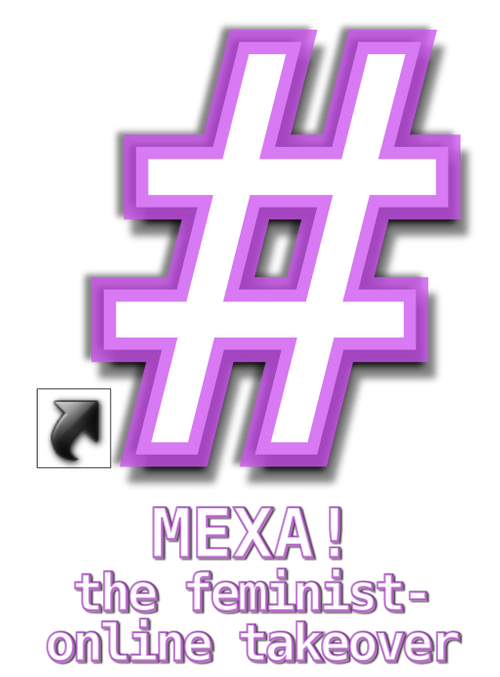
artifact from https://www.lacapsula-zh.com/mexaonline
Esta plataforma es un archivo colaborativo de #hashtagsfeministas que articulan las preocupaciones, luchas y demandas del feminismo en los últimos tiempos. En estos tiempos de distancia física, estamos explorando el mundo digital como herramienta de intercambio y colaboración.
This platform is a collaborative archive of #feministhashtags that articulate the concerns, struggles and demands of feminism in recent times. In these times of physical distance, we too are exploring the digital world as a tool for exchange and collaboration.
2017, Paloma Ayala and Adriana Domínguez, https://www.lacapsula-zh.com/mexaonline

artifact from https://www.lacapsula-zh.com/mexaonline
(620)
2017
Initiative for Indigenous Futures
Aboriginal Territories in Cyberspace (AbTeC)
The Initiative for Indigenous Futures (IIF) is a partnership of universities and community organizations dedicated to developing multiple visions of Indigenous peoples tomorrow in order to better understand where we need to go today. Through its four main components—workshops, residencies, symposia, and archive—IIF will encourage and enable artists, academics, youth and elders to imagine how we and our communities will look in the future. IIF is conducted by Aboriginal Territories in Cyberspace (AbTeC), a research network based at Concordia University.
2014, Aboriginal Territories in Cyberspace (AbTeC), http://indigenousfutures.net/
The Initiative for Indigenous Futures (IIF) is a partnership of universities and community organizations dedicated to developing multiple visions of Indigenous peoples tomorrow in order to better understand where we need to go today. Through its four main components—workshops, residencies, symposia, and archive—IIF will encourage and enable artists, academics, youth and elders to imagine how we and our communities will look in the future. IIF is conducted by Aboriginal Territories in Cyberspace (AbTeC), a research network based at Concordia University.
2014, Aboriginal Territories in Cyberspace (AbTeC), http://indigenousfutures.net/
(621)
2017
Notes on Blacceleration
Aria Dean
“Let it be said that this is not a unified theory of blaccelerationism. It is not a black accelerationism—that is, a ‘black perspective on accelerationism’—nor is it an accelerationist theory of blackness. It is not a critique of accelerationism from the position of blackness or black studies. These are notes on blaccelerationism. This portmanteau—binding blackness and accelerationism to one another—proposes that accelerationism always already exists in the territory of blackness, (x) whether it knows it or not—and, conversely, that blackness is always already accelerationist. It is my modest proposition that activating this blaccelerationism serves to articulate a necessary alternative to right and left accelerationism.” —Aria Dean
https://www.e-flux.com/journal/87/169402/notes-on-blacceleration/
“Let it be said that this is not a unified theory of blaccelerationism. It is not a black accelerationism—that is, a ‘black perspective on accelerationism’—nor is it an accelerationist theory of blackness. It is not a critique of accelerationism from the position of blackness or black studies. These are notes on blaccelerationism. This portmanteau—binding blackness and accelerationism to one another—proposes that accelerationism always already exists in the territory of blackness, (x) whether it knows it or not—and, conversely, that blackness is always already accelerationist. It is my modest proposition that activating this blaccelerationism serves to articulate a necessary alternative to right and left accelerationism.” —Aria Dean
https://www.e-flux.com/journal/87/169402/notes-on-blacceleration/
(622)
2017
Exotic Trade
Tabita Rezaire
Exotic Trade is love is anger is pain is healing on screens
Exotic Trade is hardrive memory is forgotten data [page "Data: The new four-letter word for feminism" not found] is unearthed potential
Exotic Trade is a diagnosis is a remedy is caring
Exotic Trade is trying
Exotic Trade is for you is for us
Exotic Trade is sharing fluids of survival
Exotic Trade is wet and juicy love
Exotic Trade is harnessing the power of vibration (x)
Exotic Trade is contradiction is complicity exposed
Exotic Trade is struggling with self-love
Exotic Trade is self-commodification is self-realisation is self-doubt
Exotic Trade is me for sell
2017, Tabita Rezaire, https://tabitarezaire.com/exotictrade.html; referred by Xin Xin
Johannesburg

screenshot of Tabita Rezaire, Exotic Trade, https://tabitarezaire.com/exotictrade.html

artifact from https://tabitarezaire.com/exotictrade.html
Exotic Trade is love is anger is pain is healing on screens
Exotic Trade is hardrive memory is forgotten data [page "Data: The new four-letter word for feminism" not found] is unearthed potential
Exotic Trade is a diagnosis is a remedy is caring
Exotic Trade is trying
Exotic Trade is for you is for us
Exotic Trade is sharing fluids of survival
Exotic Trade is wet and juicy love
Exotic Trade is harnessing the power of vibration (x)
Exotic Trade is contradiction is complicity exposed
Exotic Trade is struggling with self-love
Exotic Trade is self-commodification is self-realisation is self-doubt
Exotic Trade is me for sell
2017, Tabita Rezaire, https://tabitarezaire.com/exotictrade.html; referred by Xin Xin
Johannesburg

screenshot of Tabita Rezaire, Exotic Trade, https://tabitarezaire.com/exotictrade.html

artifact from https://tabitarezaire.com/exotictrade.html
(623)
2017
Glitch @ Night
Victoria Sin
“Glitch @ Night is curated by Legacy Russell as part of an evening resistance in celebration of radical sound, bodies and nightlife, brought to you AFK by #GlitchFeminism.” —Excerpt from ICA
http://victoriasin.co.uk/index.php/projects/glitch/ https://frieze.com/article/post-cyber-feminist-international-2017

“Victoria Sin performing at Glitch @ Night, part of Post-Cyber Feminist International 2017, ICA, London. Courtesy: ICA, London; photograph: Mark Blower”, image from http://victoriasin.co.uk/index.php/projects/glitch/

“Victoria Sin performing at Glitch @ Night, part of Post Cyber Feminism International 2017, ICA, London. Courtesy: ICA, London; photograph: Mark Blower”, image from https://frieze.com/article/post-cyber-feminist-international-2017

“Victoria Sin, Narrative Reflections on Looking (2017). Courtesy the artist”, image from https://archive.ica.art/whats-on/glitch-night
“Glitch @ Night is curated by Legacy Russell as part of an evening resistance in celebration of radical sound, bodies and nightlife, brought to you AFK by #GlitchFeminism.” —Excerpt from ICA
http://victoriasin.co.uk/index.php/projects/glitch/ https://frieze.com/article/post-cyber-feminist-international-2017

“Victoria Sin performing at Glitch @ Night, part of Post-Cyber Feminist International 2017, ICA, London. Courtesy: ICA, London; photograph: Mark Blower”, image from http://victoriasin.co.uk/index.php/projects/glitch/

“Victoria Sin performing at Glitch @ Night, part of Post Cyber Feminism International 2017, ICA, London. Courtesy: ICA, London; photograph: Mark Blower”, image from https://frieze.com/article/post-cyber-feminist-international-2017

“Victoria Sin, Narrative Reflections on Looking (2017). Courtesy the artist”, image from https://archive.ica.art/whats-on/glitch-night
(624)
2017
Cyborgrrrls
Constanza Piña (Corazón de Robota), Melissa Aguilar, Vero Ireta, Sofia Main
El Cyborgrrrls es una fiesta crítica, hackfeminista, tecnoanarquista y ciberlibertaria para recrear la tecnología y los estereotipos estéticos y de género. Un espacio para compartir ideas y afectos, para reprogramar tecnologías, hackear el cuerpo y confabular estrategias de desobediencia técnica, mediante conjuraciones ciberbrujísticas y electromágicas.
The Cyborgrrrls is a critical, hackfeminist, technoanarchist and cyber-libertarian party to recreate technology and aesthetic and gender stereotypes. A space to share ideas and affections, to reprogram technologies, hack the body and conspire strategies of technical disobedience, by means of cyber-witchcraft and electromagnetic conjurations.
2017, Constanza Piña (Corazón de Robota), Melissa Aguilar, Vero Ireta, and Sofia Main, https://cyborgrrrls.wordpress.com/home/; referred by Constanza Piña (Corazón de Robota) and Melissa Aguilar
Mexico City
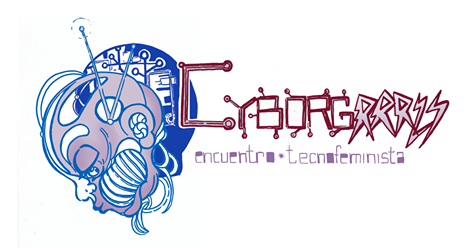
artifact from https://cyborgrrrls.wordpress.com/comunicado-sobre-el-devenir-del-encuentro-tecnofeminista-cyborgrrrls-2020/
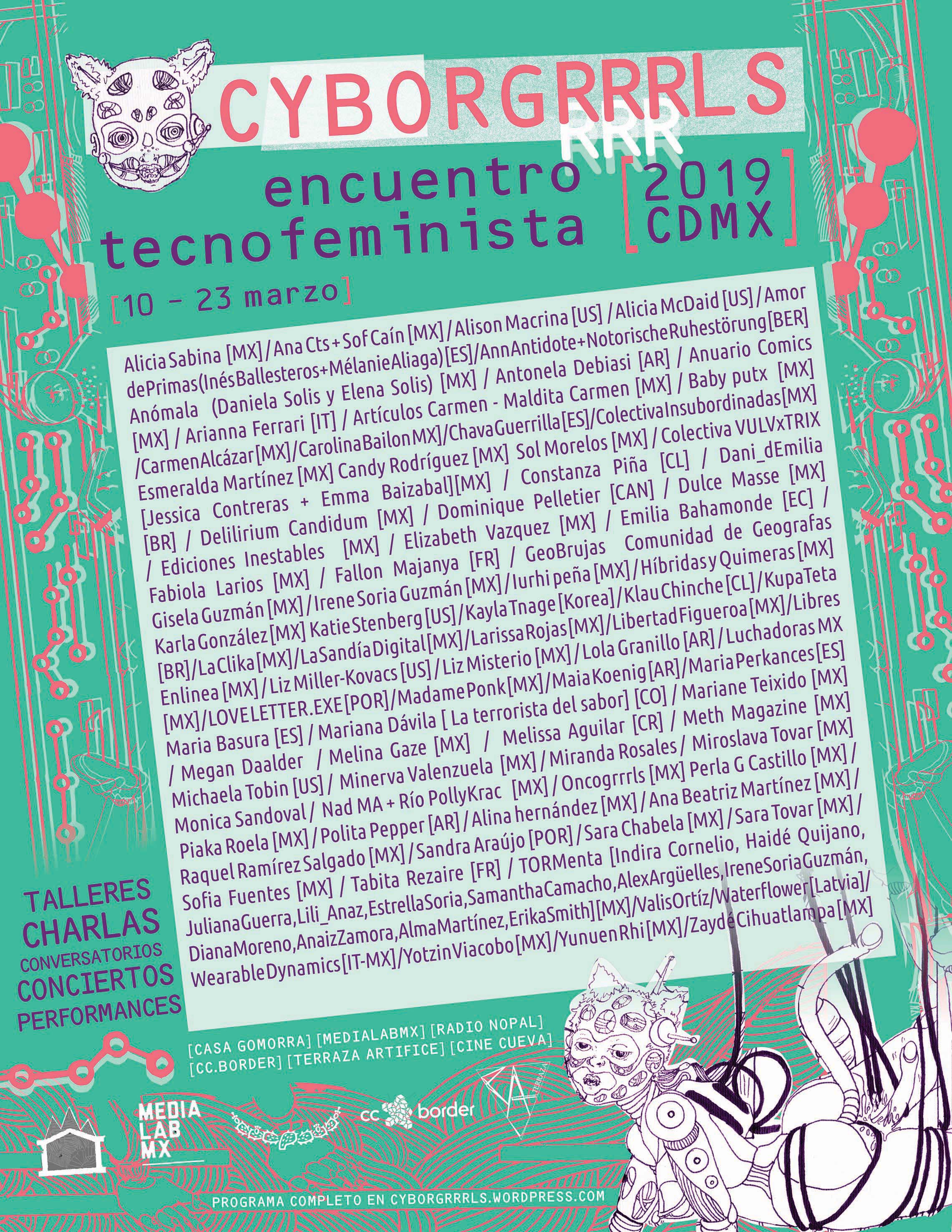
poster from Cyborgrrrls 2019, image emailed by Melissa Aguilar
El Cyborgrrrls es una fiesta crítica, hackfeminista, tecnoanarquista y ciberlibertaria para recrear la tecnología y los estereotipos estéticos y de género. Un espacio para compartir ideas y afectos, para reprogramar tecnologías, hackear el cuerpo y confabular estrategias de desobediencia técnica, mediante conjuraciones ciberbrujísticas y electromágicas.
The Cyborgrrrls is a critical, hackfeminist, technoanarchist and cyber-libertarian party to recreate technology and aesthetic and gender stereotypes. A space to share ideas and affections, to reprogram technologies, hack the body and conspire strategies of technical disobedience, by means of cyber-witchcraft and electromagnetic conjurations.
2017, Constanza Piña (Corazón de Robota), Melissa Aguilar, Vero Ireta, and Sofia Main, https://cyborgrrrls.wordpress.com/home/; referred by Constanza Piña (Corazón de Robota) and Melissa Aguilar
Mexico City
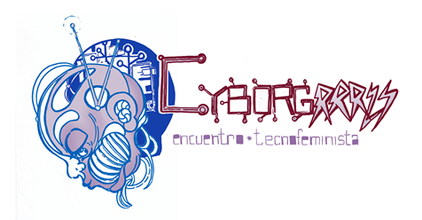
artifact from https://cyborgrrrls.wordpress.com/comunicado-sobre-el-devenir-del-encuentro-tecnofeminista-cyborgrrrls-2020/
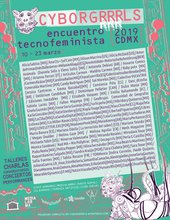
poster from Cyborgrrrls 2019, image emailed by Melissa Aguilar
(625)
2017
Hackers of Resistance (HoRs)
Hey, you, staring at the flickering, bleeding screen. We see you, right now, through the cameras on the ground, above the clouds, and within your very hands.
Luckily, we’re not the fbi-dot-gov.
We are HoRs: sex workers, refugees, immigrants,
Witches, Shamans, Sisters,
Queer Femmes of color.
Looking at last month’s credit card statement, you spent 24.99 for the gym and 55.42 at GNC. Why don’t you consider bulking up your cybersecurity? Don’t worry. We’re on your side. The Hors will help you reclaim your life and reprogram the 1’s and 0’s that build our world.
Non-hegemonic,
Non-normative,
Non-conforming Hacktivists. […]
Our bodies are networked.
Their servers, our battleground.
We will overflow their system gates. […]
To defend against corporate fascism, we must break their tools and craft our own.
To hack is to create, design, and resist.
What we do is self-defense, self-determination.
We will survive suppression!
We must reroute the flow of information and resources to the people. We must scream until we are no longer ignored. We must kick until their walls fall down.
You have power. Let’s take matters into our own hands.
Hack because we refuse to stay in the dark.
http://wearehors.xyz/ https://adanewmedia.org/issue13/hors/index.html

Screenshot, 2020, Firefox v76.0.1 on Mac OS 10.13.3; http://wearehors.xyz/

artifact from http://wearehors.xyz/

artifact from http://wearehors.xyz/, https://vimeo.com/232424555

artifact from https://adanewmedia.org/issue13/hors/index.html
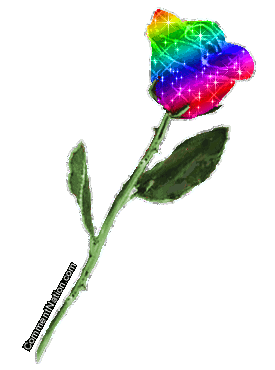
artifact from https://adanewmedia.org/issue13/hors/index.html
Hey, you, staring at the flickering, bleeding screen. We see you, right now, through the cameras on the ground, above the clouds, and within your very hands.
Luckily, we’re not the fbi-dot-gov.
We are HoRs: sex workers, refugees, immigrants,
Witches, Shamans, Sisters,
Queer Femmes of color.
Looking at last month’s credit card statement, you spent 24.99 for the gym and 55.42 at GNC. Why don’t you consider bulking up your cybersecurity? Don’t worry. We’re on your side. The Hors will help you reclaim your life and reprogram the 1’s and 0’s that build our world.
Non-hegemonic,
Non-normative,
Non-conforming Hacktivists. […]
Our bodies are networked.
Their servers, our battleground.
We will overflow their system gates. […]
To defend against corporate fascism, we must break their tools and craft our own.
To hack is to create, design, and resist.
What we do is self-defense, self-determination.
We will survive suppression!
We must reroute the flow of information and resources to the people. We must scream until we are no longer ignored. We must kick until their walls fall down.
You have power. Let’s take matters into our own hands.
Hack because we refuse to stay in the dark.
http://wearehors.xyz/ https://adanewmedia.org/issue13/hors/index.html
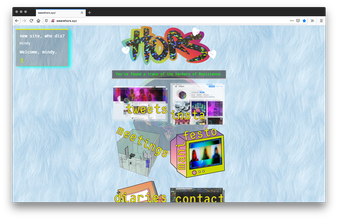
Screenshot, 2020, Firefox v76.0.1 on Mac OS 10.13.3; http://wearehors.xyz/

artifact from http://wearehors.xyz/

artifact from http://wearehors.xyz/, https://vimeo.com/232424555

artifact from https://adanewmedia.org/issue13/hors/index.html

artifact from https://adanewmedia.org/issue13/hors/index.html
(626)
2017
Tomorrow People
Jolene Rickard
Most Indigenous peoples have considered the universe in how they shape their worlds, so why wouldn’t a contemporary Kanien’kehá:ka artist reimagine the relationship between Sky World (the Haudenosaunee site of origin) and Earth? In her exhibition, Tomorrow People, Skawennati provides a provocative “thought path” that activates the symbolism of an ancient, yet contemporary culture through hints of recognizable signs, materials and metaphor while piercing a linear or Cartesian acceptance of time. By reimagining key Haudenosaunee philosophies: the Creation Story and the Ohen:ton Karihwatehkwen (Thanksgiving Address), the artist playfully reclaims the super-human powers of the Ancient Beings as avatars in cyberspace. […]
North America is not a post-colonial space. The virtual realm and the creation of avatars open up another plateau to imagine different realities. Skawennati levels the hierarchy of technological access while challenging the normalization of oppression, both internally and externally for Indigenous peoples. By daring to reimagine the emblematic trope of renewal through the experience of Sky Woman as avatar, Skawennati provides another translation of the ongoing affirmation of what is Haudenosaunee.
2017, Skawennati; excerpt from Jolene Rickard, Skawennati: Tomorrow People (Montreal: Galerie OBORO, 2017); excerpt p. 1
https://www.are.na/block/8146961 https://e-artexte.ca/id/eprint/28166/
Most Indigenous peoples have considered the universe in how they shape their worlds, so why wouldn’t a contemporary Kanien’kehá:ka artist reimagine the relationship between Sky World (the Haudenosaunee site of origin) and Earth? In her exhibition, Tomorrow People, Skawennati provides a provocative “thought path” that activates the symbolism of an ancient, yet contemporary culture through hints of recognizable signs, materials and metaphor while piercing a linear or Cartesian acceptance of time. By reimagining key Haudenosaunee philosophies: the Creation Story and the Ohen:ton Karihwatehkwen (Thanksgiving Address), the artist playfully reclaims the super-human powers of the Ancient Beings as avatars in cyberspace. […]
North America is not a post-colonial space. The virtual realm and the creation of avatars open up another plateau to imagine different realities. Skawennati levels the hierarchy of technological access while challenging the normalization of oppression, both internally and externally for Indigenous peoples. By daring to reimagine the emblematic trope of renewal through the experience of Sky Woman as avatar, Skawennati provides another translation of the ongoing affirmation of what is Haudenosaunee.
2017, Skawennati; excerpt from Jolene Rickard, Skawennati: Tomorrow People (Montreal: Galerie OBORO, 2017); excerpt p. 1
https://www.are.na/block/8146961 https://e-artexte.ca/id/eprint/28166/
(627)
2017
Owerà:ke Non Aié:nahne: Filling in the Blank Spaces
Mikhel Proulx
To be sure, much of AbTeC’s work for the past twenty years has revolved around imagination and speculation. The results have often been fanciful and far-fetched. But what’s more, this future-gazing has been matched by material productions and critical texts that build methods to realize such futures. These efforts affirm the presence of Indigenous peoples in the technological future and ensure the capacities of Indigenous people to create their own roles in digital culture. These are not mainstream images of the future focused on the myth of the pioneering individual. Instead, we see in AbTeC’s body of work cohesive and collective visions of the future enabled by communities and grounded in shared priorities. Through this impressive set of achievements, the research network has become an international criterion for active participation in digital cultures and a model for developing long-lasting community engagements. AbTeC’s sustained effort in actively making a place in the future for Indigenous traditions helps ensure the continued vitality of their communities.
2017, Jason Edward Lewis and Skawennati (exhibition, Leonard & Bina Ellen Art Gallery, Concordia University, Montreal, QC, November 4–December 2, 2017); excerpt from Mikhel Proulx, “Twenty Years of Aboriginal Territories in Cyberspace,” Leonard & Bina Ellen Art Gallery, Concordia University, http://ellengallery.concordia.ca/exposition/combler-les-espaces-vides/?lang=en
https://www.are.na/block/8147059 https://e-artexte.ca/id/eprint/28964/
To be sure, much of AbTeC’s work for the past twenty years has revolved around imagination and speculation. The results have often been fanciful and far-fetched. But what’s more, this future-gazing has been matched by material productions and critical texts that build methods to realize such futures. These efforts affirm the presence of Indigenous peoples in the technological future and ensure the capacities of Indigenous people to create their own roles in digital culture. These are not mainstream images of the future focused on the myth of the pioneering individual. Instead, we see in AbTeC’s body of work cohesive and collective visions of the future enabled by communities and grounded in shared priorities. Through this impressive set of achievements, the research network has become an international criterion for active participation in digital cultures and a model for developing long-lasting community engagements. AbTeC’s sustained effort in actively making a place in the future for Indigenous traditions helps ensure the continued vitality of their communities.
2017, Jason Edward Lewis and Skawennati (exhibition, Leonard & Bina Ellen Art Gallery, Concordia University, Montreal, QC, November 4–December 2, 2017); excerpt from Mikhel Proulx, “Twenty Years of Aboriginal Territories in Cyberspace,” Leonard & Bina Ellen Art Gallery, Concordia University, http://ellengallery.concordia.ca/exposition/combler-les-espaces-vides/?lang=en
https://www.are.na/block/8147059 https://e-artexte.ca/id/eprint/28964/
(628)
2017
Híbridas y Quimeras [Hybrids and Chimeras]
Piaka Roela, Libertad Figueroa, Mabe Frati, Corazón de Robota, Itzel Noyz
Ruido es brujería. Ruido es magia. Ruido es placer. Se busca la generación de herramientas propias, medios e instrumentos para producir sonido, desde una realidad latinoamericana y a través de la experiencia de habitar cuerpos catalogados como femeninos, abyectos y monstruosos. Somos una entidad de sonoridades.
Noise is witchcraft. Noise is magic. Noise is pleasure. HMQ seeks the generation of their own tools, means and instruments to produce sound, from a Latin American reality and through the experience of inhabiting bodies catalogued as feminine, abject and monstrous. We are an entity of sonorities. We are Hybrids, Mosaics and Chimeras.
2017, Piaka Roela, Libertad Figueroa, Mabe Frati, Constanza Piña (Corazón de Robota), and Itzel Noyz, https://hibridosmosaicosyquimeras.wordpress.com/; referred by Constanza Piña (Corazón de Robota) (x)
https://hibridosmosaicosyquimeras.files.wordpress.com/2017/12/hmyq-en.pdf

Híbridas y Quimeras [Hybrids and Chimeras] image from page 10 of presskit

Híbridas y Quimeras [Hybrids and Chimeras] image from page 11 of presskit
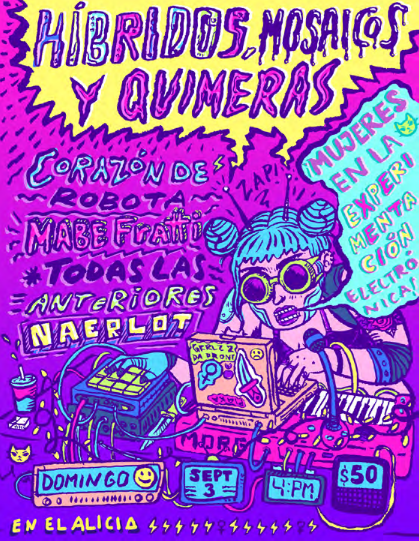
Híbridas y Quimeras [Hybrids and Chimeras] image from page 13 of presskit
Ruido es brujería. Ruido es magia. Ruido es placer. Se busca la generación de herramientas propias, medios e instrumentos para producir sonido, desde una realidad latinoamericana y a través de la experiencia de habitar cuerpos catalogados como femeninos, abyectos y monstruosos. Somos una entidad de sonoridades.
Noise is witchcraft. Noise is magic. Noise is pleasure. HMQ seeks the generation of their own tools, means and instruments to produce sound, from a Latin American reality and through the experience of inhabiting bodies catalogued as feminine, abject and monstrous. We are an entity of sonorities. We are Hybrids, Mosaics and Chimeras.
2017, Piaka Roela, Libertad Figueroa, Mabe Frati, Constanza Piña (Corazón de Robota), and Itzel Noyz, https://hibridosmosaicosyquimeras.wordpress.com/; referred by Constanza Piña (Corazón de Robota) (x)
https://hibridosmosaicosyquimeras.files.wordpress.com/2017/12/hmyq-en.pdf
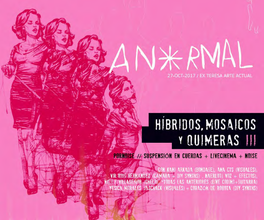
Híbridas y Quimeras [Hybrids and Chimeras] image from page 10 of presskit

Híbridas y Quimeras [Hybrids and Chimeras] image from page 11 of presskit

Híbridas y Quimeras [Hybrids and Chimeras] image from page 13 of presskit
(629)
2017
New Black Portraitures
Aria Dean
This browser-based exhibition explores the changing status of black portraiture in relation to strategies for visibility, concealment, and self-representation online. What is a black portrait? What does it mean to make and circulate a black portrait at a moment when visibility online can be both a means of survival and an existential threat? To what extent do representations of blackness on the internet build on or break with the historical function of the portrait as a paradoxical site of repression and liberation?
This exhibition brings together eight artists—Manuel Arturo Abreu, Hamishi Farah, Juliana Huxtable, Rindon Johnson, Pastiche Lumumba, N-Prolenta (Brandon Covington), Sondra Perry, and Redeem Pettaway—whose works represent varying positions in relation to these questions. All explore definitions of this genre that go beyond simply portraying black individuals, and instead interrogate the relationship between “blackness” and “portraiture.”
2017, Aria Dean, https://newblackportraitures.rhizome.org/; referred by Legacy Russell

Exhibition microsite designed by Pat Shiu.

Sondra Perry, It’s in the Game, video still 00:01, https://vimeo.com/239707230
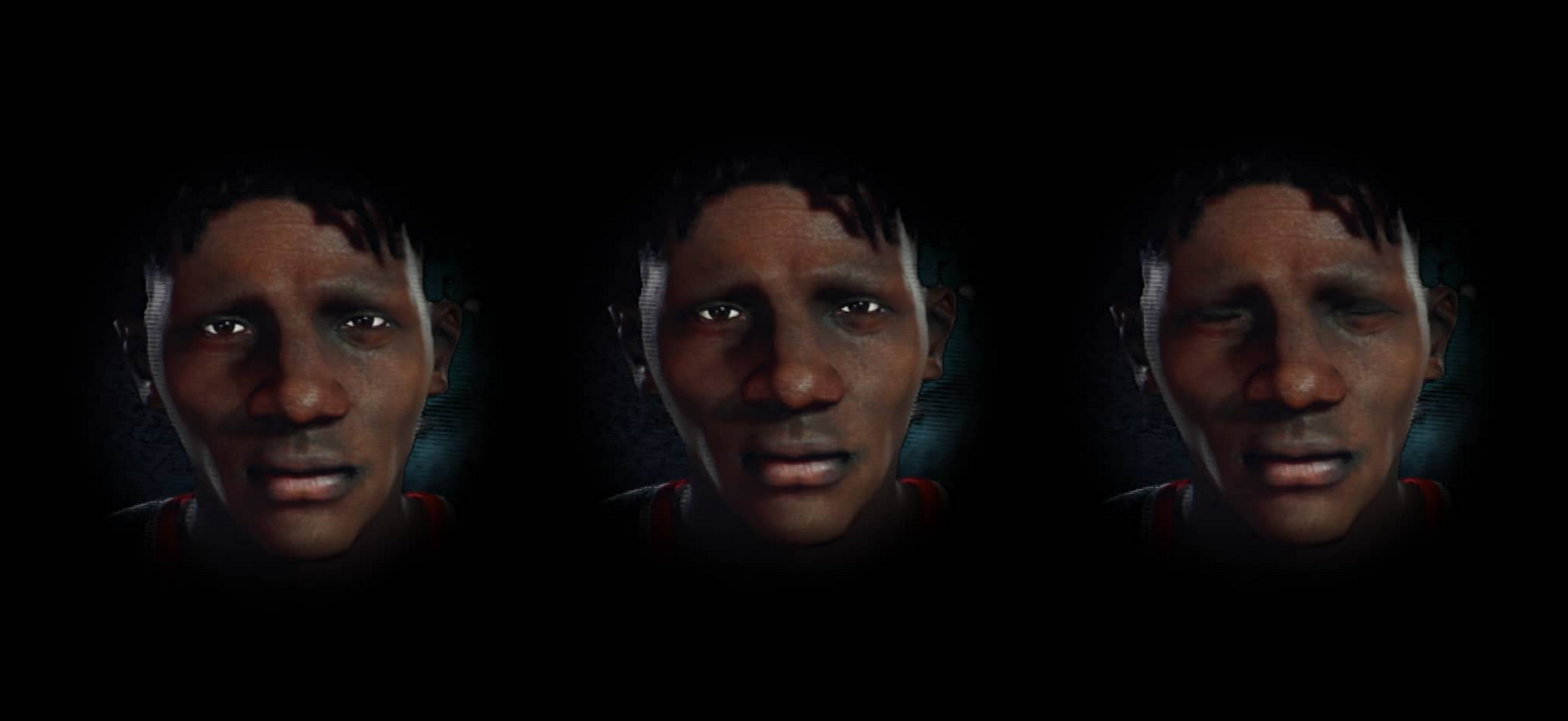
Rindon Johnson, Away With You, video still 00:00, https://vimeo.com/239704954

manuel arturo abreu, Ambient Portraits, video still 18:23, https://vimeo.com/239860521
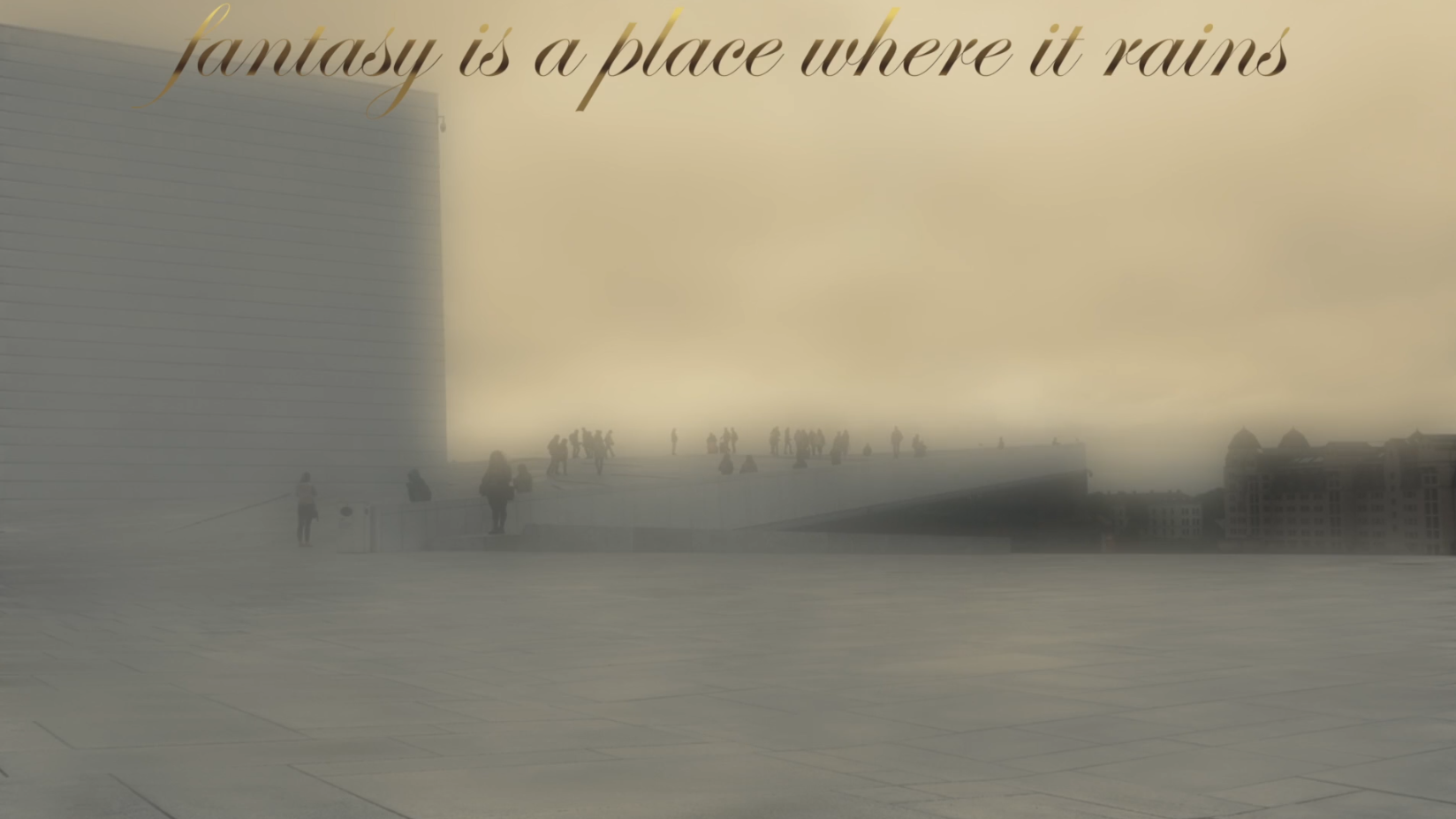
N-Prolenta, N-Prolenta, Ally Theater (Barcode Nudes), video still 00:24, https://vimeo.com/239713976
This browser-based exhibition explores the changing status of black portraiture in relation to strategies for visibility, concealment, and self-representation online. What is a black portrait? What does it mean to make and circulate a black portrait at a moment when visibility online can be both a means of survival and an existential threat? To what extent do representations of blackness on the internet build on or break with the historical function of the portrait as a paradoxical site of repression and liberation?
This exhibition brings together eight artists—Manuel Arturo Abreu, Hamishi Farah, Juliana Huxtable, Rindon Johnson, Pastiche Lumumba, N-Prolenta (Brandon Covington), Sondra Perry, and Redeem Pettaway—whose works represent varying positions in relation to these questions. All explore definitions of this genre that go beyond simply portraying black individuals, and instead interrogate the relationship between “blackness” and “portraiture.”
2017, Aria Dean, https://newblackportraitures.rhizome.org/; referred by Legacy Russell
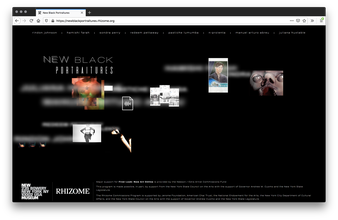
Exhibition microsite designed by Pat Shiu.

Sondra Perry, It’s in the Game, video still 00:01, https://vimeo.com/239707230
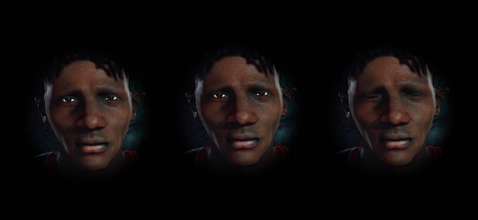
Rindon Johnson, Away With You, video still 00:00, https://vimeo.com/239704954

manuel arturo abreu, Ambient Portraits, video still 18:23, https://vimeo.com/239860521

N-Prolenta, N-Prolenta, Ally Theater (Barcode Nudes), video still 00:24, https://vimeo.com/239713976
a:active, a:hover { or position: unavoidable; pays homage to the continuous screening of porn clips inside sex-focused nightclubs. Looming overhead in open areas of the bar, several monitors often function as fixed gazing points in lieu of access to smartphones. The on-screen content mirrors the chosen theme of the night in silent acknowledgement of the bodies in the space. To see representation of one’s self, or one’s desired self, on screen suggests that the performance of sexuality is accepted and that living the viewer’s fantasies is both tangible and encouraged. Even without paying direct attention to these films, they linger peripherally, silently impacting the ambient pulse of the space. […]
Functioning in many of the same ways, sex-focused websites act as their own kind of nightclub where cam entertainers enact a similar peripheral seduction. They function as public forums for people to cruise, be cruised, buy sex and live fantasies in a tailored environment. The difference between porn videos in night clubs and porn videos on websites are that many of performers of the pornography can talk back.
2017, SHAWNÉ MICHELAIN HOLLOWAY, https://www.shawnemichaelainholloway.com/aactive-ahover-or-positionunavoidable; referred by Legacy Russell
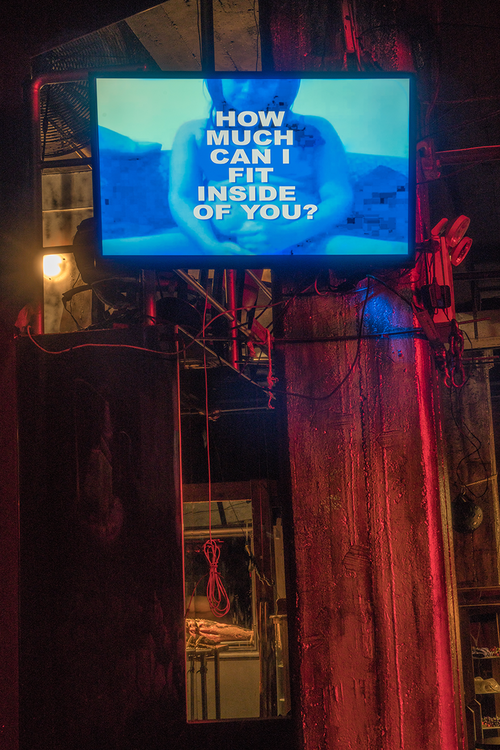
installation image by Jason Mandella, image from https://www.shawnemichaelainholloway.com/aactive-ahover-or-positionunavoidable
a:active, a:hover { or position: unavoidable; pays homage to the continuous screening of porn clips inside sex-focused nightclubs. Looming overhead in open areas of the bar, several monitors often function as fixed gazing points in lieu of access to smartphones. The on-screen content mirrors the chosen theme of the night in silent acknowledgement of the bodies in the space. To see representation of one’s self, or one’s desired self, on screen suggests that the performance of sexuality is accepted and that living the viewer’s fantasies is both tangible and encouraged. Even without paying direct attention to these films, they linger peripherally, silently impacting the ambient pulse of the space. […]
Functioning in many of the same ways, sex-focused websites act as their own kind of nightclub where cam entertainers enact a similar peripheral seduction. They function as public forums for people to cruise, be cruised, buy sex and live fantasies in a tailored environment. The difference between porn videos in night clubs and porn videos on websites are that many of performers of the pornography can talk back.
2017, SHAWNÉ MICHELAIN HOLLOWAY, https://www.shawnemichaelainholloway.com/aactive-ahover-or-positionunavoidable; referred by Legacy Russell
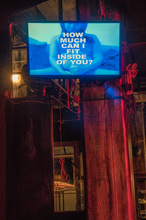
installation image by Jason Mandella, image from https://www.shawnemichaelainholloway.com/aactive-ahover-or-positionunavoidable
(631)
2017
4 Survival 4 Pleasure
Emily Mulenga
A brand-new work entitled 4 Survival 4 Pleasure, a sequel to Orange Bikini, follows the avatar on a journey through a succession of luxurious digital landscapes, claiming for herself a sense of absolute agency. The piece touches on aspects of cyborg theory, as well as the assertion that whether she is a concert pianist or dressed in jewels and feathers for carnival, a woman is equally valuable, important and justified. Mulenga’s central theme is the desire for those who are marginalized not only to survive, but to find happiness and empowerment.
2017, Emily Mulenga, https://www.emilymulenga.com/4-survival-4-pleasure; excerpt from “Emily Mulenga: Taking Up Space - Exhibition at Firstsite in Colchester,” ArtRabbit, https://www.artrabbit.com/events/emily-mulenga-taking-up-space; referred by Legacy Russell

“Emily Mulenga, 4 Survival 4 Pleasure (still), 2017. Image courtesy of the artist”, image from https://www.artrabbit.com/events/emily-mulenga-taking-up-space
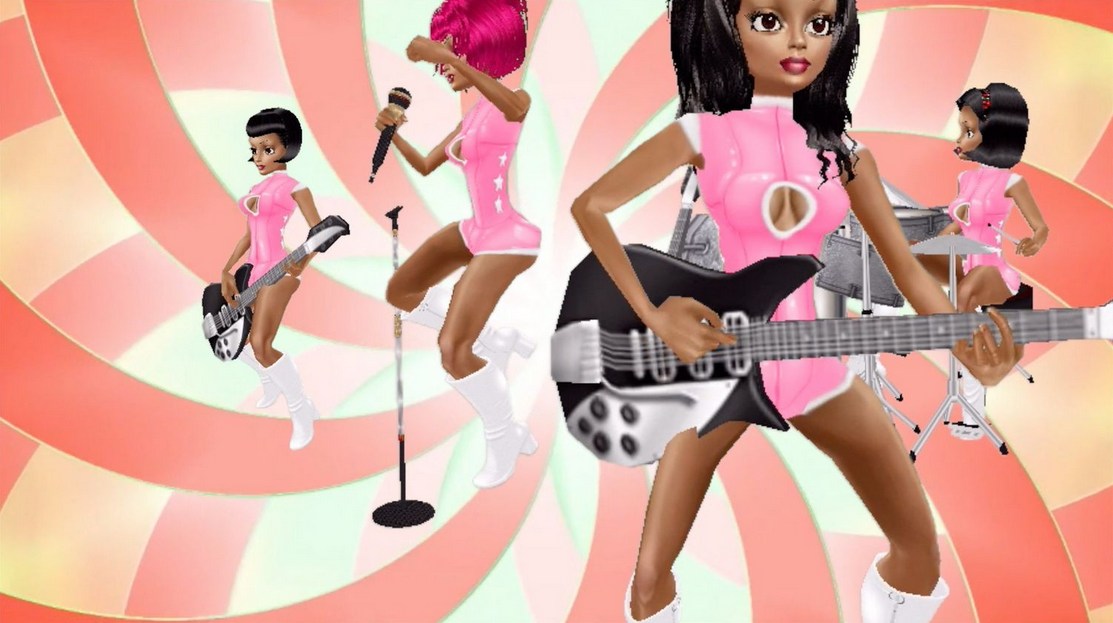
“Emily Mulenga, 4 Survival 4 Pleasure (still), 2017. Image courtesy of the artist”, image from https://www.artrabbit.com/events/emily-mulenga-taking-up-space
A brand-new work entitled 4 Survival 4 Pleasure, a sequel to Orange Bikini, follows the avatar on a journey through a succession of luxurious digital landscapes, claiming for herself a sense of absolute agency. The piece touches on aspects of cyborg theory, as well as the assertion that whether she is a concert pianist or dressed in jewels and feathers for carnival, a woman is equally valuable, important and justified. Mulenga’s central theme is the desire for those who are marginalized not only to survive, but to find happiness and empowerment.
2017, Emily Mulenga, https://www.emilymulenga.com/4-survival-4-pleasure; excerpt from “Emily Mulenga: Taking Up Space - Exhibition at Firstsite in Colchester,” ArtRabbit, https://www.artrabbit.com/events/emily-mulenga-taking-up-space; referred by Legacy Russell

“Emily Mulenga, 4 Survival 4 Pleasure (still), 2017. Image courtesy of the artist”, image from https://www.artrabbit.com/events/emily-mulenga-taking-up-space

“Emily Mulenga, 4 Survival 4 Pleasure (still), 2017. Image courtesy of the artist”, image from https://www.artrabbit.com/events/emily-mulenga-taking-up-space
(632)
2017
Revisiting the Future
Cornelia Sollfrank
The name Old Boys Network clearly indicated the form of our organization: the network. Our slogan, “The Mode is the Message—the Code is the Collective,” suggested an emphasis on process and an awareness of how things were done. In the 1990s, the term “network” resonated with non-hierarchical communication, with distributed relationships that mysteriously interwove to create a tear-proof texture, nevertheless fluid and dynamic, and, if nothing else, with the ability to challenge and undermine rigid and hierarchical power structures. At the same time, it remained a form that was elusive and susceptible to obfuscation, which, in combination with political concerns, could feed suspicions.
Certain formal aspects of our organization, however, were clearly defined and subjected to defined rules. For all public appearances, for example, we had agreed that at least three Old Boys would have to present the network and perform the principles of difference and disagreement by providing three different angles on the same topic. […] It is my contention that the vagueness regarding who and what OBN actually was and how it functioned reinforced a certain opaqueness that eventually added to its popularity.
2017, Cornelia Sollfrank, transmediale/archive, November 28, 2017, https://transmediale.de/content/revisiting-the-future; referred by Cornelia Sollfrank
https://www.are.na/block/8512298
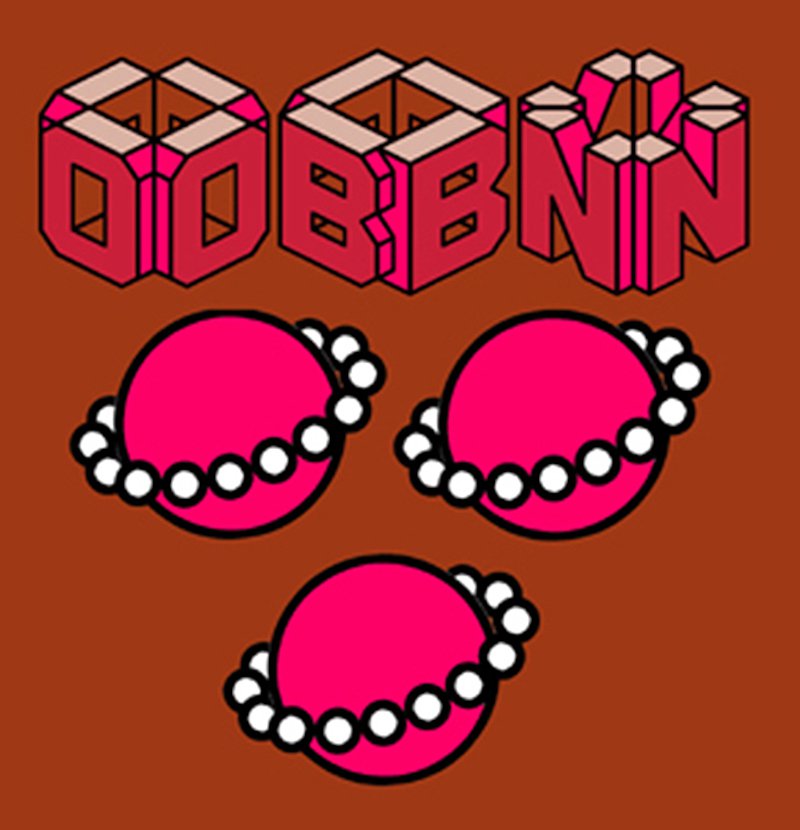
“Old Boys Network graphics from Irena Woelle,” image from https://transmediale.de/content/revisiting-the-future
The name Old Boys Network clearly indicated the form of our organization: the network. Our slogan, “The Mode is the Message—the Code is the Collective,” suggested an emphasis on process and an awareness of how things were done. In the 1990s, the term “network” resonated with non-hierarchical communication, with distributed relationships that mysteriously interwove to create a tear-proof texture, nevertheless fluid and dynamic, and, if nothing else, with the ability to challenge and undermine rigid and hierarchical power structures. At the same time, it remained a form that was elusive and susceptible to obfuscation, which, in combination with political concerns, could feed suspicions.
Certain formal aspects of our organization, however, were clearly defined and subjected to defined rules. For all public appearances, for example, we had agreed that at least three Old Boys would have to present the network and perform the principles of difference and disagreement by providing three different angles on the same topic. […] It is my contention that the vagueness regarding who and what OBN actually was and how it functioned reinforced a certain opaqueness that eventually added to its popularity.
2017, Cornelia Sollfrank, transmediale/archive, November 28, 2017, https://transmediale.de/content/revisiting-the-future; referred by Cornelia Sollfrank
https://www.are.na/block/8512298
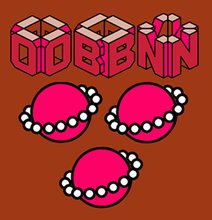
“Old Boys Network graphics from Irena Woelle,” image from https://transmediale.de/content/revisiting-the-future
(633)
2017
Fetish of the Click: A Small History of the Computer Mouse as Vulva
Ali Na
As Sadie Plant argues, much of the activity around technology is part of a phallic quest of development and popularization: “Disks are sucked into the dark recesses of welcoming vaginal slits, console cowboys jack into cyberspace, and virtual sex has been defined as ‘teledildonics,’ a prosthetic extension of male membership.” By claiming the computer mouse as vulva, possibilities of bodies and sexual experiences are made multiple, and importantly the phallic penetration of primary straight male orientation is no longer the primary mode of technological engagement. Plant’s important work on teledildonics functions as a descriptive and pervasive experience of computing. However, the computer mouse as vulva offers an important corrective to the dominance of patriarchal motifs in technology. I contend the vulva mouse presents a counter to the sexualization of technology that reinscribes a heteronormative phallocentricism. Instead of jacking in, the vulva mouse clicks, offering the power of the click or clit.
2017, Ali Na, Feminist Media Studies 18, no. 2 (2017): pp. 221–234; excerpt p. 229
Editor’s Note: For the 2021 Computer Mouse Conference organized by emma rae bruml and Ashley Jane Lewis, I spoke with Ali Na in the interview “The Connectivity of Touching” to expand on their 2017 essay. To introduce Na’s research, I wrote, “In our phallocentric techno-history, we jack in. The predecessor of the computer mouse was the lightpen, originating from a tool of violence, the lightgun. […] While yonic metaphors in computing have also existed through the ‘box’ and the ‘bug,’ the computer mouse as vulva eliminated the possibility of penetrability.” —MS
https://doi.org/10.1080/14680777.2017.1298143
As Sadie Plant argues, much of the activity around technology is part of a phallic quest of development and popularization: “Disks are sucked into the dark recesses of welcoming vaginal slits, console cowboys jack into cyberspace, and virtual sex has been defined as ‘teledildonics,’ a prosthetic extension of male membership.” By claiming the computer mouse as vulva, possibilities of bodies and sexual experiences are made multiple, and importantly the phallic penetration of primary straight male orientation is no longer the primary mode of technological engagement. Plant’s important work on teledildonics functions as a descriptive and pervasive experience of computing. However, the computer mouse as vulva offers an important corrective to the dominance of patriarchal motifs in technology. I contend the vulva mouse presents a counter to the sexualization of technology that reinscribes a heteronormative phallocentricism. Instead of jacking in, the vulva mouse clicks, offering the power of the click or clit.
2017, Ali Na, Feminist Media Studies 18, no. 2 (2017): pp. 221–234; excerpt p. 229
Editor’s Note: For the 2021 Computer Mouse Conference organized by emma rae bruml and Ashley Jane Lewis, I spoke with Ali Na in the interview “The Connectivity of Touching” to expand on their 2017 essay. To introduce Na’s research, I wrote, “In our phallocentric techno-history, we jack in. The predecessor of the computer mouse was the lightpen, originating from a tool of violence, the lightgun. […] While yonic metaphors in computing have also existed through the ‘box’ and the ‘bug,’ the computer mouse as vulva eliminated the possibility of penetrability.” —MS
https://doi.org/10.1080/14680777.2017.1298143
(634)
2017
Behind the White Shadows of Image Processing: Shirley, Lena, Jennifer, and the Angel of History
Rosa Menkman
While taking an image of the face and saving it to memory seems like a simple, straightforward act, in reality a large set of protocols intervene in the processes of saving the face to memory, including, but not limited to scaling, reordering, decomposing, and reconstituting image data, in favor of certain affordances, which cater to techno-conventional, political, and historically biased settings. Some of these biases can be traced back to the history of the color test card; a history which can offer an insightful perspective on how image compression standards have come to exist. […]
Throughout the many legacy histories of image processing—including, but not limited to analogue photography, film, television, the JPEG algorithm and even Photoshop effects—this trope grew into a habitual, racial bias, violently lodged under the fold of image processing. […] It is important to be aware that a bias does not just influence the final rendering of the image; the bias also exists in what a technology does not show; what it obscures or obfuscates and what image data simply deletes. [While there is] an effort to spread awareness around the biases and habits that are embedded in the histories of resolution setting, even today, the stories of these specters influencing our images—albeit invisible to the unaware observer—are often missing.
2017, Rosa Menkman, in Faceless: Re-inventing Privacy Through Subversive Media Strategies, eds. Bogomir Doringer and Brigitte Felderer (Berlin: De Gruyter, 2017), pp. 159–179; excerpt from abstract, https://beyondresolution.info/Behind-White-Shadows; submitted by Rosa Menkman

“And as every war needs a patch—I created the white on white (glow in the dark) ‘the Lena’ patch” by Rosa Menkman, image from https://beyondresolution.info/Behind-White-Shadows
While taking an image of the face and saving it to memory seems like a simple, straightforward act, in reality a large set of protocols intervene in the processes of saving the face to memory, including, but not limited to scaling, reordering, decomposing, and reconstituting image data, in favor of certain affordances, which cater to techno-conventional, political, and historically biased settings. Some of these biases can be traced back to the history of the color test card; a history which can offer an insightful perspective on how image compression standards have come to exist. […]
Throughout the many legacy histories of image processing—including, but not limited to analogue photography, film, television, the JPEG algorithm and even Photoshop effects—this trope grew into a habitual, racial bias, violently lodged under the fold of image processing. […] It is important to be aware that a bias does not just influence the final rendering of the image; the bias also exists in what a technology does not show; what it obscures or obfuscates and what image data simply deletes. [While there is] an effort to spread awareness around the biases and habits that are embedded in the histories of resolution setting, even today, the stories of these specters influencing our images—albeit invisible to the unaware observer—are often missing.
2017, Rosa Menkman, in Faceless: Re-inventing Privacy Through Subversive Media Strategies, eds. Bogomir Doringer and Brigitte Felderer (Berlin: De Gruyter, 2017), pp. 159–179; excerpt from abstract, https://beyondresolution.info/Behind-White-Shadows; submitted by Rosa Menkman

“And as every war needs a patch—I created the white on white (glow in the dark) ‘the Lena’ patch” by Rosa Menkman, image from https://beyondresolution.info/Behind-White-Shadows
(635)
2017
Non/living Matter, Bioscientific Imaginaries and Feminist Technoecologies of Bioart
Marietta Radomska
The concept of feminist technoecology combines these perspectives: an understanding of bodies and technologies (in the sense of practices, applied knowledges, procedures, and conventionally understood techniques, machines, and tools) as always already enmeshed with one another; and the notion of ecology as a dynamic complex of multiplex relationalities between processes, meanings, entities and environments.
Feminist technoecology delivers what we might potentially find in other concepts pertaining to feminist analyses of nature and culture: it attends to some of the aspects of the nature/culture relation addressed to a different degree in the case of, for example, the concept of somatechnics. Yet, whereas the latter emphasizes the enmeshment of bodies (often theorized as implicitly human) and technologies, technoecology underscores multiplicitous relationalities between differential organic and inorganic matter, “hard” and “soft” technologies and techniques, as well as other power mechanisms and processes. Consequently, as an analytical tool, feminist technoecology concentrates on a meticulous examination of these complex relationalities and their dynamics.
2017, Marietta Radomska, in “Feminist Technoecologies,” eds. Dagmar Lorenz-Meyer, Pat Treusch, and Xin Liu, special issue, Australian Feminist Studies 32, no. 94 (2017): pp. 377–394; excerpt pp. 379–380; submitted by Marco Donnarumma
https://www.tandfonline.com/doi/full/10.1080/08164649.2017.1466649
The concept of feminist technoecology combines these perspectives: an understanding of bodies and technologies (in the sense of practices, applied knowledges, procedures, and conventionally understood techniques, machines, and tools) as always already enmeshed with one another; and the notion of ecology as a dynamic complex of multiplex relationalities between processes, meanings, entities and environments.
Feminist technoecology delivers what we might potentially find in other concepts pertaining to feminist analyses of nature and culture: it attends to some of the aspects of the nature/culture relation addressed to a different degree in the case of, for example, the concept of somatechnics. Yet, whereas the latter emphasizes the enmeshment of bodies (often theorized as implicitly human) and technologies, technoecology underscores multiplicitous relationalities between differential organic and inorganic matter, “hard” and “soft” technologies and techniques, as well as other power mechanisms and processes. Consequently, as an analytical tool, feminist technoecology concentrates on a meticulous examination of these complex relationalities and their dynamics.
2017, Marietta Radomska, in “Feminist Technoecologies,” eds. Dagmar Lorenz-Meyer, Pat Treusch, and Xin Liu, special issue, Australian Feminist Studies 32, no. 94 (2017): pp. 377–394; excerpt pp. 379–380; submitted by Marco Donnarumma
https://www.tandfonline.com/doi/full/10.1080/08164649.2017.1466649
(636)
2017
Cuerpos mujeres en campos de batalla digitales: redes de información y apoyo de activistas por el derecho a decidir en América Latina [Women’s Bodies on the Digital Battlefield: Information Exchange and Networks of Support and Solidarity of Pro-Choice Act
Alex Hache, Mayelin Sanchez Martinez
La expresión “Eres tan segura como la persona menos segura de tu red” permite resaltar en estos casos la importancia de la adopción de prácticas de seguridad colectivas. El trabajo con activistas y defensoras de Derechos Humanos respect de la adopción de nuevas prácticas seguras en el uso de TIC e internet obliga a cambiar el foco tradicionalmente puesto en lo individual, para incluir también a las colectivas y redes de afinidad y acción.
“You are as safe as the person most at risk in your network” is a “traditional” principle for establishing collective security protocols and practices. Such a perspective on security places an emphasis on the individual; but, activists interviewed here point towards more inclusive, collective practices. In doing so, they prompt a discourse shift. For example, as research shows, effective digital security is achieved when activists working together install, configure, and use a particular tool rather than having the technical expertise lie with a certain individual in the network.
2017, Spideralex (Alex Hache) and Mayeli Sanchez Martinez; Spanish excerpt p. 23, https://donestech.net/files/cuerposmujeres_0.pdf; English excerpt p. 16, https://donestech.net/files/womensbodies_0.pdf
La expresión “Eres tan segura como la persona menos segura de tu red” permite resaltar en estos casos la importancia de la adopción de prácticas de seguridad colectivas. El trabajo con activistas y defensoras de Derechos Humanos respect de la adopción de nuevas prácticas seguras en el uso de TIC e internet obliga a cambiar el foco tradicionalmente puesto en lo individual, para incluir también a las colectivas y redes de afinidad y acción.
“You are as safe as the person most at risk in your network” is a “traditional” principle for establishing collective security protocols and practices. Such a perspective on security places an emphasis on the individual; but, activists interviewed here point towards more inclusive, collective practices. In doing so, they prompt a discourse shift. For example, as research shows, effective digital security is achieved when activists working together install, configure, and use a particular tool rather than having the technical expertise lie with a certain individual in the network.
2017, Spideralex (Alex Hache) and Mayeli Sanchez Martinez; Spanish excerpt p. 23, https://donestech.net/files/cuerposmujeres_0.pdf; English excerpt p. 16, https://donestech.net/files/womensbodies_0.pdf
(637)
2017
Ciberfeminismos 2.017…
Eva Cruels, Alex Hache, Núria Vergés Bosch
La misma producción de tecnologías, con su extracción de minerales y materias primas y los procesos de ensamblaje en las industrias de la electrónica y las telecomunicaciones, está impregnada de violencia contra las mujeres. Ambas etapas dependen en gran medida de trabajo esclavo que suele operar en las zonas económicas especiales conocidas por sus terribles condiciones de trabajo y abusos a los derechos humanos. Actualmente, hay una carencia de redes e iniciativas que pueden desafiar esas condiciones.
Luego, encontramos la brecha de género en relación con el acceso a las tecnologías que sigue dividiendo en gran medida las zonas urbanas y rurales y se encuentra también fuertemente relacionada con la edad y el género. Los datos actuales estiman que hay 200 millones menos de mujeres conectadas a Internet que hombres. Esta falta de acceso puede ser causada por una conectividad deficiente o una infraestructura inexistente o por una falta de inclusión y usabilidad e el diseño de tecnologías, y también puede agravarse por la discriminación, empujando o prohibiendo a las mujeres su acceso a las TIC, negando sus derechos básicos a la comunicación, información y conocimiento.
The very production of technologies, with its extraction of minerals and raw materials and the assembly processes in the electronics and telecommunications industries, is steeped in violence against women. Both stages rely heavily on slave labor that often operates in special economic zones known for their dire working conditions and human rights abuses. Currently, there is a lack of networks and initiatives that can challenge those conditions.
Then, we find the gender gap in relation to access to technologies that continues to largely divide urban and rural areas and is also strongly related to age and gender. Current data estimates that there are 200 million fewer women connected to the Internet than men. This lack of access can be caused by poor connectivity or non-existent infrastructure or by a lack of inclusion and usability in the design of technologies, and it can also be aggravated by discrimination, pushing or prohibiting women from accessing ICTs, denying their basic rights to communication, information and knowledge.
2017, Eva Cruels, Spideralex (Alex Hache), and Núria Vergés Bosc, in ¡Feminismos! Eslabones fuertes del cambio social, ed. Ritimo (Paris: Ritimo, 2017), pp. 127–135; excerpt p. 129; submitted by Spideralex (Alex Hache)
https://www.coredem.info/IMG/pdf/pass17_es_web.pdf
La misma producción de tecnologías, con su extracción de minerales y materias primas y los procesos de ensamblaje en las industrias de la electrónica y las telecomunicaciones, está impregnada de violencia contra las mujeres. Ambas etapas dependen en gran medida de trabajo esclavo que suele operar en las zonas económicas especiales conocidas por sus terribles condiciones de trabajo y abusos a los derechos humanos. Actualmente, hay una carencia de redes e iniciativas que pueden desafiar esas condiciones.
Luego, encontramos la brecha de género en relación con el acceso a las tecnologías que sigue dividiendo en gran medida las zonas urbanas y rurales y se encuentra también fuertemente relacionada con la edad y el género. Los datos actuales estiman que hay 200 millones menos de mujeres conectadas a Internet que hombres. Esta falta de acceso puede ser causada por una conectividad deficiente o una infraestructura inexistente o por una falta de inclusión y usabilidad e el diseño de tecnologías, y también puede agravarse por la discriminación, empujando o prohibiendo a las mujeres su acceso a las TIC, negando sus derechos básicos a la comunicación, información y conocimiento.
The very production of technologies, with its extraction of minerals and raw materials and the assembly processes in the electronics and telecommunications industries, is steeped in violence against women. Both stages rely heavily on slave labor that often operates in special economic zones known for their dire working conditions and human rights abuses. Currently, there is a lack of networks and initiatives that can challenge those conditions.
Then, we find the gender gap in relation to access to technologies that continues to largely divide urban and rural areas and is also strongly related to age and gender. Current data estimates that there are 200 million fewer women connected to the Internet than men. This lack of access can be caused by poor connectivity or non-existent infrastructure or by a lack of inclusion and usability in the design of technologies, and it can also be aggravated by discrimination, pushing or prohibiting women from accessing ICTs, denying their basic rights to communication, information and knowledge.
2017, Eva Cruels, Spideralex (Alex Hache), and Núria Vergés Bosc, in ¡Feminismos! Eslabones fuertes del cambio social, ed. Ritimo (Paris: Ritimo, 2017), pp. 127–135; excerpt p. 129; submitted by Spideralex (Alex Hache)
https://www.coredem.info/IMG/pdf/pass17_es_web.pdf
(638)
2017
In Search of a Female Technological Identity in Electronic Literature: Dancing with the Spanish Domestic Cyborg
María Goicoechea, Laura Sánchez
Let us talk about power, about speed, about connectivity. Power is a cultural practice, and evaluating power in cyberspace is crucial for a feminist study. Our problem as women in cyberspace is becoming not so much one of access (though it is still a problem), but one of power, speed, time, visibility. […] As the net, the feminine technological identity is an infinite tissue of multiplied differences. A tissue of possibility and otherness. A fragmentary and discontinuous diorama.
Certain experiences unite us, though: we make the most of our vital situation, as in our slogan “we became creative when we got disconnected”; we share the periphery as Spanish speakers in the web; and the need to represent ourselves in a cyberspace full of perverted caricatures and distortions of femininity; we fight for the vindication of the intimate and the domestic as spaces to make things visible and not as places to fall silent in; we advocate the use of technology as a form of power and as a social construction in which women need to take part, to participate in its design so that our needs are met and we do not become designed by it.
2017, María Goícoechea and Laura Sánchez, in #WomenTechLit, eds. Maria Mencia and N. Katherine Hayles (Morgantown, WV: West Virginia University Press, 2017), pp. 285–302; excerpt pp. 285–286; referred by Tina Escaja (Alm@ Pérez)
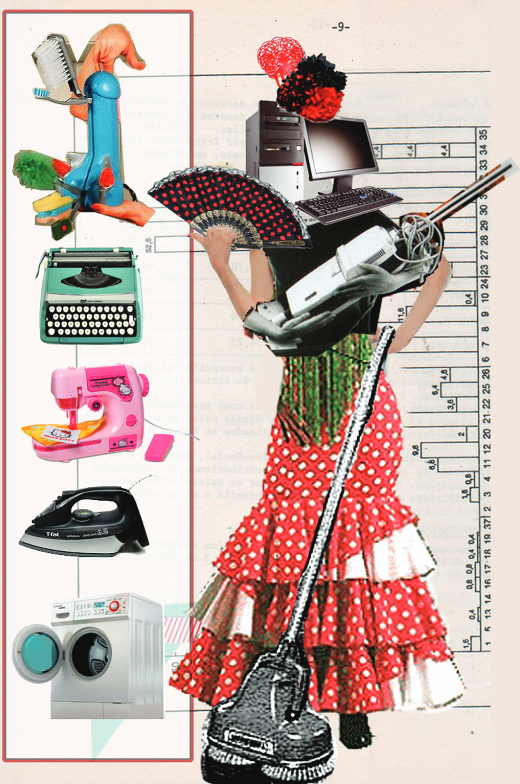
“The Spanish Domestic Cyborg,” collage by Laura Sánchez, p.287
Let us talk about power, about speed, about connectivity. Power is a cultural practice, and evaluating power in cyberspace is crucial for a feminist study. Our problem as women in cyberspace is becoming not so much one of access (though it is still a problem), but one of power, speed, time, visibility. […] As the net, the feminine technological identity is an infinite tissue of multiplied differences. A tissue of possibility and otherness. A fragmentary and discontinuous diorama.
Certain experiences unite us, though: we make the most of our vital situation, as in our slogan “we became creative when we got disconnected”; we share the periphery as Spanish speakers in the web; and the need to represent ourselves in a cyberspace full of perverted caricatures and distortions of femininity; we fight for the vindication of the intimate and the domestic as spaces to make things visible and not as places to fall silent in; we advocate the use of technology as a form of power and as a social construction in which women need to take part, to participate in its design so that our needs are met and we do not become designed by it.
2017, María Goícoechea and Laura Sánchez, in #WomenTechLit, eds. Maria Mencia and N. Katherine Hayles (Morgantown, WV: West Virginia University Press, 2017), pp. 285–302; excerpt pp. 285–286; referred by Tina Escaja (Alm@ Pérez)
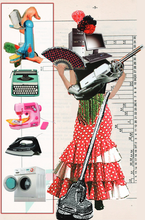
“The Spanish Domestic Cyborg,” collage by Laura Sánchez, p.287
(639)
2017
A Cyborg Manifesto of Black People in Theory
Jade E. Davis
There is something that happens if you have your own skin in the game and you theorize blackness. You feel compelled to re-insert us into the canon, the ether, the world. To affirm our existence, even if it is just in the pages of our writing or the images that accompany our work means we have at least one other black person in the room. A familiar. Kin. More often than not the expectation is that we will be able to separate theory and blackness. If you, as a black person, plan on fully engaging, you must erase the self. It is not a slow death in the Berlant sense. It is more akin to a slow dying … A slow murder. It is the violence that Fanon recognized as always attacking at your core being.
In 2011 I was enrolled in a core course in the second year of my program. We read “A Cyborg Manifesto.” As is often the case, I was the only black person in the room. I read something different than everyone else based on the discussion. All I could think was, “we use words like cyborg because we don’t have the language to talk about the black experience, more specifically the organizing role chattel slavery, signified by the black body, played and continues to play, in culture and society.” Instead of joining the discussion I copied the text into a google doc and did a find and replace … “cyborg” should be “black slave.”
2017, Jade E. Davis, Performing the Digital, June 9, 2017, http://jadedid.com/performingthedigital/2017/06/09/a-cyborg-manifesto-of-black-people-in-theory/; referred by Legacy Russell
There is something that happens if you have your own skin in the game and you theorize blackness. You feel compelled to re-insert us into the canon, the ether, the world. To affirm our existence, even if it is just in the pages of our writing or the images that accompany our work means we have at least one other black person in the room. A familiar. Kin. More often than not the expectation is that we will be able to separate theory and blackness. If you, as a black person, plan on fully engaging, you must erase the self. It is not a slow death in the Berlant sense. It is more akin to a slow dying … A slow murder. It is the violence that Fanon recognized as always attacking at your core being.
In 2011 I was enrolled in a core course in the second year of my program. We read “A Cyborg Manifesto.” As is often the case, I was the only black person in the room. I read something different than everyone else based on the discussion. All I could think was, “we use words like cyborg because we don’t have the language to talk about the black experience, more specifically the organizing role chattel slavery, signified by the black body, played and continues to play, in culture and society.” Instead of joining the discussion I copied the text into a google doc and did a find and replace … “cyborg” should be “black slave.”
2017, Jade E. Davis, Performing the Digital, June 9, 2017, http://jadedid.com/performingthedigital/2017/06/09/a-cyborg-manifesto-of-black-people-in-theory/; referred by Legacy Russell
(640)
2017
Onkweshòn:’a: Words Before All Else Part 1
Skawennati
Skawennati was born in the Mohawk territory of Kahnawake in 1969. Concerned with the absence of indigenous people in the collective imaginary of the future, this Mohawk artist uses media arts to create an indigenous presence in cyberspace. […] Her “futuristic” representations of indigenous people allow to undermine the stereotypes spread by the media and to assert the vibrancy of a current indigenous culture with a long future ahead of it.
Presented at the Musée d’art contemporain de Montréal for the Biennale de Montréal 2014, TimeTraveller™, (x) 2007–2014, is centered on a series of nine short machinimas. In them we follow the story of Hunter, a young Mohawk of the 22nd century, who, using the technology of TimeTraveller™ glasses, goes on a virtual quest on which he visits the milestones of indigenous history and meets Karahkwenhawi, a young Mohawk woman from the present. In another machinima artwork Onkweshòn:’a: Words Before All Else Part 1, 2017, an avatar recites in English, French and Kanien’kéha the first section of the Ohen:ton Karihwatehkwen, which means “Thanksgiving Address”, words traditionally spoken at the beginning of all Haudenosaunee (“Iroquois”) gatherings.
2017, Skawennati; excerpt from “Collectors Symposium 2017,” MAC Montréal, https://macm.org/en/activities/collectors-symposium-2017/
Skawennati was born in the Mohawk territory of Kahnawake in 1969. Concerned with the absence of indigenous people in the collective imaginary of the future, this Mohawk artist uses media arts to create an indigenous presence in cyberspace. […] Her “futuristic” representations of indigenous people allow to undermine the stereotypes spread by the media and to assert the vibrancy of a current indigenous culture with a long future ahead of it.
Presented at the Musée d’art contemporain de Montréal for the Biennale de Montréal 2014, TimeTraveller™, (x) 2007–2014, is centered on a series of nine short machinimas. In them we follow the story of Hunter, a young Mohawk of the 22nd century, who, using the technology of TimeTraveller™ glasses, goes on a virtual quest on which he visits the milestones of indigenous history and meets Karahkwenhawi, a young Mohawk woman from the present. In another machinima artwork Onkweshòn:’a: Words Before All Else Part 1, 2017, an avatar recites in English, French and Kanien’kéha the first section of the Ohen:ton Karihwatehkwen, which means “Thanksgiving Address”, words traditionally spoken at the beginning of all Haudenosaunee (“Iroquois”) gatherings.
2017, Skawennati; excerpt from “Collectors Symposium 2017,” MAC Montréal, https://macm.org/en/activities/collectors-symposium-2017/
(641)
2017
She Falls for Ages
Skawennati
This sci-fi retelling of the Haudenosaunee (Iroquois) creation story reimagines Sky World as a futuristic, utopic space and Sky Woman as a brave astronaut and world-builder. It begins on an ancient, alien world whose culture centers on the care and reverence for the beautiful, energy-producing Celestial Tree. The central figure of the tale is Otsitsakaion, a telepath. When she learns that her world is dying, she knows what must be done; she must become the seed of the new world. Using the new media technique known as machinima, She Falls For Ages boldly mixes Haudenosaunee storytelling with science fiction to connect the deep past and the far future.
2017, Skawennati, http://www.skawennati.com/SheFallsForAges/
This sci-fi retelling of the Haudenosaunee (Iroquois) creation story reimagines Sky World as a futuristic, utopic space and Sky Woman as a brave astronaut and world-builder. It begins on an ancient, alien world whose culture centers on the care and reverence for the beautiful, energy-producing Celestial Tree. The central figure of the tale is Otsitsakaion, a telepath. When she learns that her world is dying, she knows what must be done; she must become the seed of the new world. Using the new media technique known as machinima, She Falls For Ages boldly mixes Haudenosaunee storytelling with science fiction to connect the deep past and the far future.
2017, Skawennati, http://www.skawennati.com/SheFallsForAges/
(642)
2017
Peacemaker Returns
Skawennati
My name is Iotetshèn:’en, and I live on Earth—usually. Our planet is united under the Great Law of Peace. […] Earth has been attacked by more than one visitor from outerspace, and our harmonious way of life is being threatened. So for now, my home is this spaceship. We are traveling to the first meeting of the five nearest, friendliest planets in our galaxy. The goal of our mission is to create a union that will protect us from attacks and also help us share our very different knowledges. I have been invited on this historic voyage because I have a special power …
Thus begins The Peacemaker Returns, a futuristic saga set in 3025 yet firmly rooted in the ancestral Haudenosaunee (Iroquois) confederation story and featuring historical figures such as Tekanawí:ta, Jacques Cartier, and a president addicted to Twitter! This new machinima—an animation-style movie produced on the virtual reality platform Second Life—is the core of the children’s exhibition Teiakwanahstahsontéhrha’ | We Extend the Rafters, designed specifically for kids aged 5 to 11 by Skawennati. Audiences of all ages are invited to (re)discover some traditions in the artist’s “museum of the future,” an original installation. A guided tour and a collective workshop in the form of an innovative board game will encourage young and mature viewers alike to (re)learn history from an Indigenous perspective and imagine how all people can contribute to the world of tomorrow, reminding us how History, like any other narrative, is a construction defined by those who tell it.
2017, Skawennati, Obx Labs/AbTeC, video, 18 min., 39 sec., https://vimeo.com/253432671/2aab1f857d; excerpt from “Skawennati. Teiakwanahstahsontéhrha’ We Extend the Rafters. Children’s exhibition,” VOX, http://centrevox.ca/en/exposition/skawennati-teiakwanahstahsontehrha-we-extend-the-rafters-childrens-exhibition/
My name is Iotetshèn:’en, and I live on Earth—usually. Our planet is united under the Great Law of Peace. […] Earth has been attacked by more than one visitor from outerspace, and our harmonious way of life is being threatened. So for now, my home is this spaceship. We are traveling to the first meeting of the five nearest, friendliest planets in our galaxy. The goal of our mission is to create a union that will protect us from attacks and also help us share our very different knowledges. I have been invited on this historic voyage because I have a special power …
Thus begins The Peacemaker Returns, a futuristic saga set in 3025 yet firmly rooted in the ancestral Haudenosaunee (Iroquois) confederation story and featuring historical figures such as Tekanawí:ta, Jacques Cartier, and a president addicted to Twitter! This new machinima—an animation-style movie produced on the virtual reality platform Second Life—is the core of the children’s exhibition Teiakwanahstahsontéhrha’ | We Extend the Rafters, designed specifically for kids aged 5 to 11 by Skawennati. Audiences of all ages are invited to (re)discover some traditions in the artist’s “museum of the future,” an original installation. A guided tour and a collective workshop in the form of an innovative board game will encourage young and mature viewers alike to (re)learn history from an Indigenous perspective and imagine how all people can contribute to the world of tomorrow, reminding us how History, like any other narrative, is a construction defined by those who tell it.
2017, Skawennati, Obx Labs/AbTeC, video, 18 min., 39 sec., https://vimeo.com/253432671/2aab1f857d; excerpt from “Skawennati. Teiakwanahstahsontéhrha’ We Extend the Rafters. Children’s exhibition,” VOX, http://centrevox.ca/en/exposition/skawennati-teiakwanahstahsontehrha-we-extend-the-rafters-childrens-exhibition/
(643)
2017
Wild Seed in the Machine
Jessica Marie Johnson, Mark Anthony Neal
Black Code Studies is queer, femme, fugitive, and radical. As praxis and methodology, it waxes insurgent. It refutes conceptions of the digital that remove black diasporic people from engagement with technology, modernity, or the future. It centers black thought and cultural production across a range of digital platforms, but especially social media, where black freedom struggles intersect with black play and death in polymorphic and polyphonic intimacy. […]
When Cramer and Raengo declare that “black code studies emerges as a way to prepare black studies for an increasingly complex set of cultural rhythms and temporalities,” they capture the context in which this special issue appears in your hands. “Black Code” was conceived at a particular moment in the history of race—or, perhaps more apropos, Blackness—and the digital. In 2002, Alondra Nelson gathered geeks, freaks, and global nerds of color around “Afrofuturism.” Their work—and Nelson’s listserv organizing praxis—pre-dated social media platforms like Twitter, Tumblr, and Facebook. Broadband was not a “public” good yet. […] Protecting our black digital presence is about protecting a future in which our physicality may not matter in the same way that it has in the past.
2017, Jessica Marie Johnson and Mark Anthony Neal, in “Black Code,” eds. Jessica Marie Johnson and Mark Anthony Neal, special issue, The Black Scholar 47, no. 3 (2017): pp. 1–2; excerpt p. 1; referred by Neema Githere
Black Code Studies is queer, femme, fugitive, and radical. As praxis and methodology, it waxes insurgent. It refutes conceptions of the digital that remove black diasporic people from engagement with technology, modernity, or the future. It centers black thought and cultural production across a range of digital platforms, but especially social media, where black freedom struggles intersect with black play and death in polymorphic and polyphonic intimacy. […]
When Cramer and Raengo declare that “black code studies emerges as a way to prepare black studies for an increasingly complex set of cultural rhythms and temporalities,” they capture the context in which this special issue appears in your hands. “Black Code” was conceived at a particular moment in the history of race—or, perhaps more apropos, Blackness—and the digital. In 2002, Alondra Nelson gathered geeks, freaks, and global nerds of color around “Afrofuturism.” Their work—and Nelson’s listserv organizing praxis—pre-dated social media platforms like Twitter, Tumblr, and Facebook. Broadband was not a “public” good yet. […] Protecting our black digital presence is about protecting a future in which our physicality may not matter in the same way that it has in the past.
2017, Jessica Marie Johnson and Mark Anthony Neal, in “Black Code,” eds. Jessica Marie Johnson and Mark Anthony Neal, special issue, The Black Scholar 47, no. 3 (2017): pp. 1–2; excerpt p. 1; referred by Neema Githere
(644)
2017
Cyborg Futures
Ellen Pearlman, Moon Ribas, Neil Harbisson
How do you create a new sense or augment those that already exist in order to engender new forms of expression, creativity, and understanding? Cyborg Futures is an open call and collaboration between artists, technologists, designers, engineers, makers, and/or scientists to create and develop technologies that expand human capabilities and perception. Inspiration is drawn from the biosphere, where animals and plants relate through infrasound, radiation, sonar, as well as other forms of augmented realities.
Cyborg Futures will team together artists of any discipline with technologists and scientists to help build new senses, or expand those that already exist, in order to pursue new perceptive possibilities. These unique forms of experience are the basis for the creation of a new type of cybernetic art – one that redefines the relationship between technology and the human organism.
2017, Ellen Pearlman, Moon Ribas and Neil Harbisson, Parsons School of Design, https://www.cyborgfutures.com/; submitted be Ellen Pearlman
How do you create a new sense or augment those that already exist in order to engender new forms of expression, creativity, and understanding? Cyborg Futures is an open call and collaboration between artists, technologists, designers, engineers, makers, and/or scientists to create and develop technologies that expand human capabilities and perception. Inspiration is drawn from the biosphere, where animals and plants relate through infrasound, radiation, sonar, as well as other forms of augmented realities.
Cyborg Futures will team together artists of any discipline with technologists and scientists to help build new senses, or expand those that already exist, in order to pursue new perceptive possibilities. These unique forms of experience are the basis for the creation of a new type of cybernetic art – one that redefines the relationship between technology and the human organism.
2017, Ellen Pearlman, Moon Ribas and Neil Harbisson, Parsons School of Design, https://www.cyborgfutures.com/; submitted be Ellen Pearlman
(645)
2017
Virtual Embrace Symposium
Kathy Rae Huffman, Sarah Jury, Helen Kaplinsky, Lucy A Sames, Annabelle Craven-Jones, Elizabeth Mputu, Kit Galloway and Sherrie Rabinowitz, Shu Lea Cheang, Ayesha Tan Jones, Victoria Sin, Helen Hester, Nina Wakeford, Chloe Frieda (Alien Jams)
Through performance, screening and discussion, Virtual Embrace will explore the streamed, disrupted, bodily substance—intimate, awkward, live, therapeutic, sexual, alchemical.
Kit Galloway and Sherrie Rabinowitz’s 1980 public communication sculpture ‘Hole In Space’ connected pedestrians on the streets of NYC and LA via life-size transmitted video projections of themselves in a strangely intimate science fiction fantasy. Nearly 40 years later what we are now familiar with as a ‘live feed’ thanks to the ubiquity of Wi-Fi, Skype and Facetime, is invariably interrupted by the friction of imperfect technology. Jittering, rather than flowing from source to mouth, the fantasy of the encrypted liquid body is interrupted and awkwardly jerks one back to the material lack of physical proximity.
Virtual Embrace has been developed by Res. from research carried out in the archive of media art curator Kathy Rae Huffman. The archive is formed of a collection of catalogues, videos and rare books on cyberfeminism, broadcasting, net.art, and early new media art from the 1980s to early ‘00s. For the past 12 months with Goldsmiths Library, Res. have been working on a programme of practice-based research events and commissions based around these materials.
http://beingres.org/2017/06/30/virtual-embrace-symposium/
Through performance, screening and discussion, Virtual Embrace will explore the streamed, disrupted, bodily substance—intimate, awkward, live, therapeutic, sexual, alchemical.
Kit Galloway and Sherrie Rabinowitz’s 1980 public communication sculpture ‘Hole In Space’ connected pedestrians on the streets of NYC and LA via life-size transmitted video projections of themselves in a strangely intimate science fiction fantasy. Nearly 40 years later what we are now familiar with as a ‘live feed’ thanks to the ubiquity of Wi-Fi, Skype and Facetime, is invariably interrupted by the friction of imperfect technology. Jittering, rather than flowing from source to mouth, the fantasy of the encrypted liquid body is interrupted and awkwardly jerks one back to the material lack of physical proximity.
Virtual Embrace has been developed by Res. from research carried out in the archive of media art curator Kathy Rae Huffman. The archive is formed of a collection of catalogues, videos and rare books on cyberfeminism, broadcasting, net.art, and early new media art from the 1980s to early ‘00s. For the past 12 months with Goldsmiths Library, Res. have been working on a programme of practice-based research events and commissions based around these materials.
http://beingres.org/2017/06/30/virtual-embrace-symposium/
(646)
2017
Queer AI
Emily Martinez, Ben Lerchin
Queer AI advocates for:
The queering of communication technologies.
The queering of machine learning algorithms.
The careful and collaborative curation of training material by and for a diversity of sensibilities and actors.
The cumming undone of logics and sense making.
The slipperiness of language.
The accidental poetry of nonsensical miscommunication er(r)o(r)s.
Fluid autonomous playful uncompromising disobedient bots.
Messy fleshy curious humans.
User intent mismatches as erotic deviations.
Existential pause.
Deep learning for deep orgasms.
2017–present, Emily Martinez and Ben Lerchin, https://queer.ai/, submitted by Emily Martinez
Queer AI advocates for:
The queering of communication technologies.
The queering of machine learning algorithms.
The careful and collaborative curation of training material by and for a diversity of sensibilities and actors.
The cumming undone of logics and sense making.
The slipperiness of language.
The accidental poetry of nonsensical miscommunication er(r)o(r)s.
Fluid autonomous playful uncompromising disobedient bots.
Messy fleshy curious humans.
User intent mismatches as erotic deviations.
Existential pause.
Deep learning for deep orgasms.
2017–present, Emily Martinez and Ben Lerchin, https://queer.ai/, submitted by Emily Martinez
(647)
2017
Hystrix: Porcupine Wearable
Mirabelle Jones, Anouk Wipprecht
Hystrix is a collaboration with international robotics fashion designer Anouk Wipprecht. Combining Anouk’s talents and ingenuity for producing responsive wearable dresses and my interest in making invisible stressors apparent to others, we designed in collaboration with students at CCA a wearable modeled on the defense mechanisms of the porcupine. This wearable uses a system of sensors including temperature, galvanic skin response, pulse, and proximity to deduce the stress of the wearer in relation to their proximity to others. Pointed spikes are animated when the wearer’s stress levels go beyond a certain threshold. These spikes serve as an indicator to the wearer of their state of stress, as well as a message to surrounding threats to back off.
2017, Mirabelle Jones and Anouk Wipprecht, http://www.mirabellejones.com/porcupine-wearable/; submitted by Mirabelle Jones
https://vimeo.com/312419483?embedded=true&source=video_title&owner=23276886
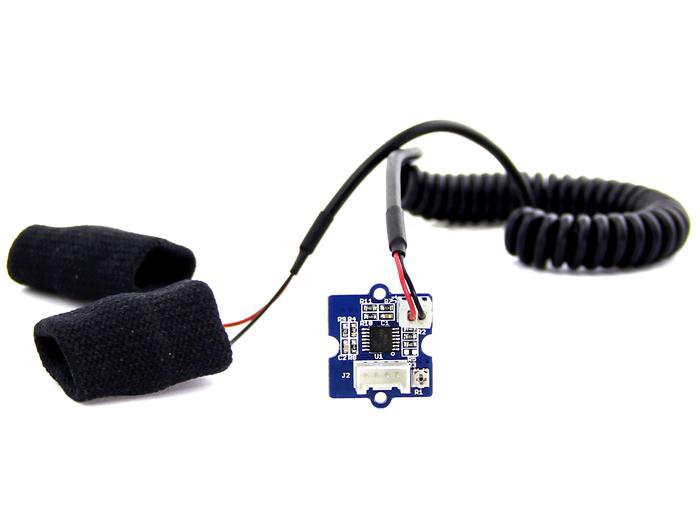
Hystrix wearable, image from http://www.mirabellejones.com/porcupine-wearable/

Hystrix, image from http://www.mirabellejones.com/porcupine-wearable/
Hystrix is a collaboration with international robotics fashion designer Anouk Wipprecht. Combining Anouk’s talents and ingenuity for producing responsive wearable dresses and my interest in making invisible stressors apparent to others, we designed in collaboration with students at CCA a wearable modeled on the defense mechanisms of the porcupine. This wearable uses a system of sensors including temperature, galvanic skin response, pulse, and proximity to deduce the stress of the wearer in relation to their proximity to others. Pointed spikes are animated when the wearer’s stress levels go beyond a certain threshold. These spikes serve as an indicator to the wearer of their state of stress, as well as a message to surrounding threats to back off.
2017, Mirabelle Jones and Anouk Wipprecht, http://www.mirabellejones.com/porcupine-wearable/; submitted by Mirabelle Jones
https://vimeo.com/312419483?embedded=true&source=video_title&owner=23276886

Hystrix wearable, image from http://www.mirabellejones.com/porcupine-wearable/

Hystrix, image from http://www.mirabellejones.com/porcupine-wearable/
(648)
2017
Queering the Map
Lucas LaRochelle
Queering the Map is a community generated counter-mapping platform for digitally archiving LGBTQ2IA+ experience in relation to physical space.
The platform provides an interface to collaboratively record the cartography of queer life—from park benches to the middle of the ocean—in order to preserve our histories and unfolding realities, which continue to be invalidated, contested, and erased. From collective action to stories of coming out, encounters with violence to moments of rapturous love, Queering the Map functions as a living archive of queer life. If it counts to you, then it counts for Queering the Map.
Through mapping LGBTQ2IA+ experience in its intersectional permutations, the project works to generate affinities across difference and beyond borders—revealing the ways in which we are intimately connected.
2017–present, Lucas LaRochelle, www.queeringthemap.com; submitted by Lucas LaRochelle.
Queering the Map is a community generated counter-mapping platform for digitally archiving LGBTQ2IA+ experience in relation to physical space.
The platform provides an interface to collaboratively record the cartography of queer life—from park benches to the middle of the ocean—in order to preserve our histories and unfolding realities, which continue to be invalidated, contested, and erased. From collective action to stories of coming out, encounters with violence to moments of rapturous love, Queering the Map functions as a living archive of queer life. If it counts to you, then it counts for Queering the Map.
Through mapping LGBTQ2IA+ experience in its intersectional permutations, the project works to generate affinities across difference and beyond borders—revealing the ways in which we are intimately connected.
2017–present, Lucas LaRochelle, www.queeringthemap.com; submitted by Lucas LaRochelle.
(649)
2017
diffrakt
Caroline Adler, Elisa Barth, Georg Dickmann, Onur Erdur, Moritz Gansen, Max Grünberg, Ki-Myoung Kim, Sara Morais dos Santos Bruss, Morten Paul, Gala Rexer, Tim Schmidt, Wladimir Velminski, Hannah Wallenfels
diffrakt | center for theoretical periphery is a collectively organized space that hosts and promotes a range of discursive formats. We aim to further exchange between current positions from art, science, society, and philosophy, and to offer a place for theoretical, artistic, and activist practice. Our events are open to all and free of charge. We are trying to make diffrakt as accessible as possible, please get in touch if you have any inquiries.
Founded in 2017, diffrakt is a non-profit association that inhabits the former space of Merve Verlag in Berlin-Schöneberg, regularly curating events in various forms and formats: conversations, workshops, book presentations, reading groups, film screenings, performances, exhibitions, and event series.
In addition to the events we organize ourselves, we also want to provide a space for others. We are open to cooperations with other initiatives, groups or interested individuals. We discuss proposals and event suggestions collectively during our jour fixe.
2017, Caroline Adler, Elisa Barth, Georg Dickmann, Onur Erdur, Moritz Gansen, Max Grünberg, Ki-Myoung Kim, Sara Morais dos Santos Bruss, Morten Paul, Gala Rexer, Tim Schmidt, Wladimir Velminski, Hannah Wallenfels, http://diffrakt.space/
Berlin
diffrakt | center for theoretical periphery is a collectively organized space that hosts and promotes a range of discursive formats. We aim to further exchange between current positions from art, science, society, and philosophy, and to offer a place for theoretical, artistic, and activist practice. Our events are open to all and free of charge. We are trying to make diffrakt as accessible as possible, please get in touch if you have any inquiries.
Founded in 2017, diffrakt is a non-profit association that inhabits the former space of Merve Verlag in Berlin-Schöneberg, regularly curating events in various forms and formats: conversations, workshops, book presentations, reading groups, film screenings, performances, exhibitions, and event series.
In addition to the events we organize ourselves, we also want to provide a space for others. We are open to cooperations with other initiatives, groups or interested individuals. We discuss proposals and event suggestions collectively during our jour fixe.
2017, Caroline Adler, Elisa Barth, Georg Dickmann, Onur Erdur, Moritz Gansen, Max Grünberg, Ki-Myoung Kim, Sara Morais dos Santos Bruss, Morten Paul, Gala Rexer, Tim Schmidt, Wladimir Velminski, Hannah Wallenfels, http://diffrakt.space/
Berlin
(650)
2017
Immaterial Girls
Rina Nkulu
I am trying to understand how a “real” girl is meant to present herself online, and in the process, I keep avoiding eye contact with the camera above my laptop’s screen. The eyes that meet the gaze of a front-facing camera are ones that look right back at me: I am aware that I’m taking a photo, that I have taken a photo. To stare into your device and find yourself looking back feels unnatural. When my eyes are on my face instead, I have more control. I confront the image of myself more than I confront myself as a viewer; for now, on-screen, I know what I look like, I know the steps I take to create this iteration of myself, and the photo that makes it to social media doesn’t reveal any of them.
In mirrors, I have no routine. I make eye contact with myself because there is nowhere else to look.
2017, Rina Nkulu, https://reallifemag.com/immaterial-girls/; submitted by Rina Nkulu
I am trying to understand how a “real” girl is meant to present herself online, and in the process, I keep avoiding eye contact with the camera above my laptop’s screen. The eyes that meet the gaze of a front-facing camera are ones that look right back at me: I am aware that I’m taking a photo, that I have taken a photo. To stare into your device and find yourself looking back feels unnatural. When my eyes are on my face instead, I have more control. I confront the image of myself more than I confront myself as a viewer; for now, on-screen, I know what I look like, I know the steps I take to create this iteration of myself, and the photo that makes it to social media doesn’t reveal any of them.
In mirrors, I have no routine. I make eye contact with myself because there is nowhere else to look.
2017, Rina Nkulu, https://reallifemag.com/immaterial-girls/; submitted by Rina Nkulu
(651)
2017
Queer Street TUA
Ginga Kondo
警視総監及び新聞カメラマン撃退事件とは、戦後、今は芸術の森として知られている上野で起きた事件。上野は当時は男娼の森としても知られていた。1948年、警視総監と新聞記者が上野公園を視察に訪れた。好奇の視線で男娼たちを眺め、フラッシュライトを炊きながら写真を撮り続けたという。すると、男娼の一人が怒り出し、警視総監と新聞記者に殴り掛かった。おそらくこれは、LGBTQの中に含まれる人々が権力に対抗した日本におけるもっとも有名な事例であろう。この作品は出来事を記念し、もしも上野が今、LGBTQコミュニティの象徴的な場所であったらと考えたものである。
The incident of repelling the police inspector general and newspaper cameraman is an incident that occurred in Ueno, which is now known as the Art Forest after the war. At that time, Ueno was also known as a male prostitution forest. In 1948, the police commissioner and a newspaper reporter visited Ueno Park to inspect it. It is said that she looked at the male prostitutes with curiosity and continued to take pictures with a flashlight. Then one of the male prostitutes became angry and started punching the police chief and the newspaper reporter. This is perhaps the most famous case in Japan of people within the LGBTQ community challenging authority. This work commemorates the event and considers what it would be like if Ueno were a symbolic place for the LGBTQ community today.
Ginga Kondo, https://gingakondo.wordpress.com/portfolio/queer-street-tua/, 2017
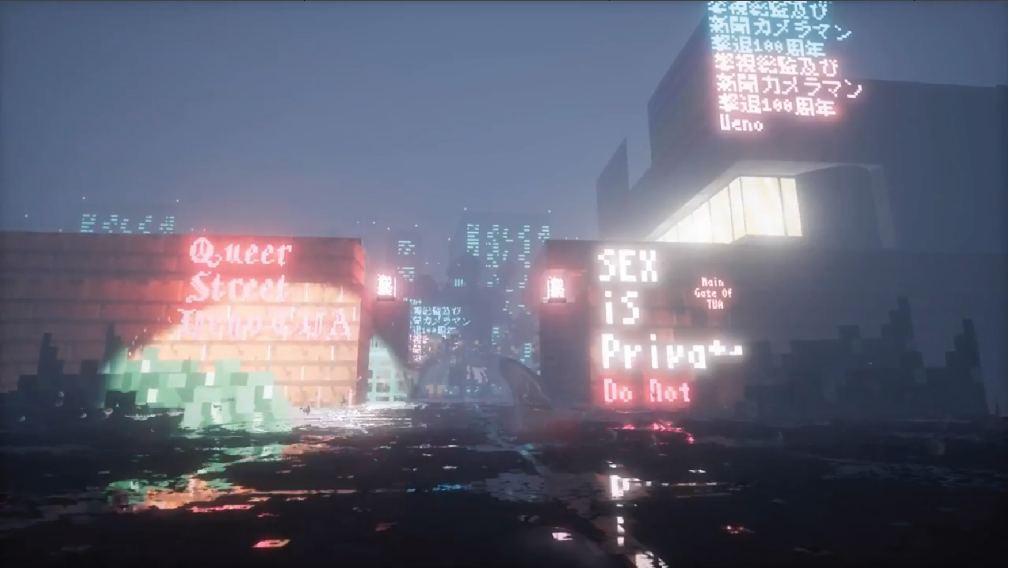
Queer Street TUA, still by Ginga Kondo, image from https://gingakondo.wordpress.com/portfolio/queer-street-tua/
警視総監及び新聞カメラマン撃退事件とは、戦後、今は芸術の森として知られている上野で起きた事件。上野は当時は男娼の森としても知られていた。1948年、警視総監と新聞記者が上野公園を視察に訪れた。好奇の視線で男娼たちを眺め、フラッシュライトを炊きながら写真を撮り続けたという。すると、男娼の一人が怒り出し、警視総監と新聞記者に殴り掛かった。おそらくこれは、LGBTQの中に含まれる人々が権力に対抗した日本におけるもっとも有名な事例であろう。この作品は出来事を記念し、もしも上野が今、LGBTQコミュニティの象徴的な場所であったらと考えたものである。
The incident of repelling the police inspector general and newspaper cameraman is an incident that occurred in Ueno, which is now known as the Art Forest after the war. At that time, Ueno was also known as a male prostitution forest. In 1948, the police commissioner and a newspaper reporter visited Ueno Park to inspect it. It is said that she looked at the male prostitutes with curiosity and continued to take pictures with a flashlight. Then one of the male prostitutes became angry and started punching the police chief and the newspaper reporter. This is perhaps the most famous case in Japan of people within the LGBTQ community challenging authority. This work commemorates the event and considers what it would be like if Ueno were a symbolic place for the LGBTQ community today.
Ginga Kondo, https://gingakondo.wordpress.com/portfolio/queer-street-tua/, 2017
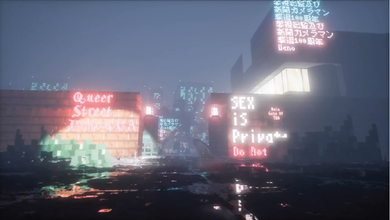
Queer Street TUA, still by Ginga Kondo, image from https://gingakondo.wordpress.com/portfolio/queer-street-tua/
(652)
2018
Environment is not a System
Tega Brain
Rather than describing ecology through interactions or exchanges between entities, [Anna L.] Tsing proposes that it emerges through encounters. For Tsing, encounters open new possibilities for thinking. They produce transformation and are therefore indeterminate. They are also non-human centered. (550) There can be encounters between different species—say a mushroom and a pine tree—or between lifeforms and non-human materials. Components of a system are implied to be static discrete units, leaving out processes of contamination and transformation. For example when predator-prey relations are described as transfers of energy between components in a system, say a walrus eats a mollusc, it is inferred that the walrus remains unchanged by the encounter. Seeing the world as made up of individuals sealed off from one another, allows for the assumption of stable categories, and makes the world easier to quantify through data, interpreted as pattern and codified as algorithm.
2018, Tega Brain, in “Research Values,” eds. Christian Ulrik Andersen and Geoff Cox, special issue, APRJA 7, no. 1 (2018): pp. 152–165; excerpt p. 159
https://www.are.na/block/9573818
Rather than describing ecology through interactions or exchanges between entities, [Anna L.] Tsing proposes that it emerges through encounters. For Tsing, encounters open new possibilities for thinking. They produce transformation and are therefore indeterminate. They are also non-human centered. (550) There can be encounters between different species—say a mushroom and a pine tree—or between lifeforms and non-human materials. Components of a system are implied to be static discrete units, leaving out processes of contamination and transformation. For example when predator-prey relations are described as transfers of energy between components in a system, say a walrus eats a mollusc, it is inferred that the walrus remains unchanged by the encounter. Seeing the world as made up of individuals sealed off from one another, allows for the assumption of stable categories, and makes the world easier to quantify through data, interpreted as pattern and codified as algorithm.
2018, Tega Brain, in “Research Values,” eds. Christian Ulrik Andersen and Geoff Cox, special issue, APRJA 7, no. 1 (2018): pp. 152–165; excerpt p. 159
https://www.are.na/block/9573818
(653)
2018
Xenofeminism: A Politics for Alienation
Laboria Cuboniks
Ours is a world in vertigo. It is a world that swarms with technological mediation, interlacing our daily lives with abstraction, virtuality, and complexity. XF constructs a feminism adapted to these realities: a feminism of unprecedented cunning, scale, and vision; a future in which the realization of gender justice and feminist emancipation (546) contribute to a universalist politics assembled from the needs of every human, cutting across race, ability, economic standing, and geographical position. No more futureless repetition on the treadmill of capital, no more submission to the drudgery of labor, productive and reproductive alike, no more reification of the given masked as critique. Our future requires depetrification. XF is not a bid for revolution, but a wager on the long game of history, demanding imagination, dexterity and persistence.
2018, Laboria Cuboniks, (x) https://laboriacuboniks.net/manifesto/; also published as The Xenofeminist Manifesto (Brooklyn: Verso, 2018); excerpt from “The Xenofeminist Manifesto: A Look Inside!” Verso, October 10, 2018, https://www.versobooks.com/blogs/4074-the-xenofeminist-manifesto-a-look-inside
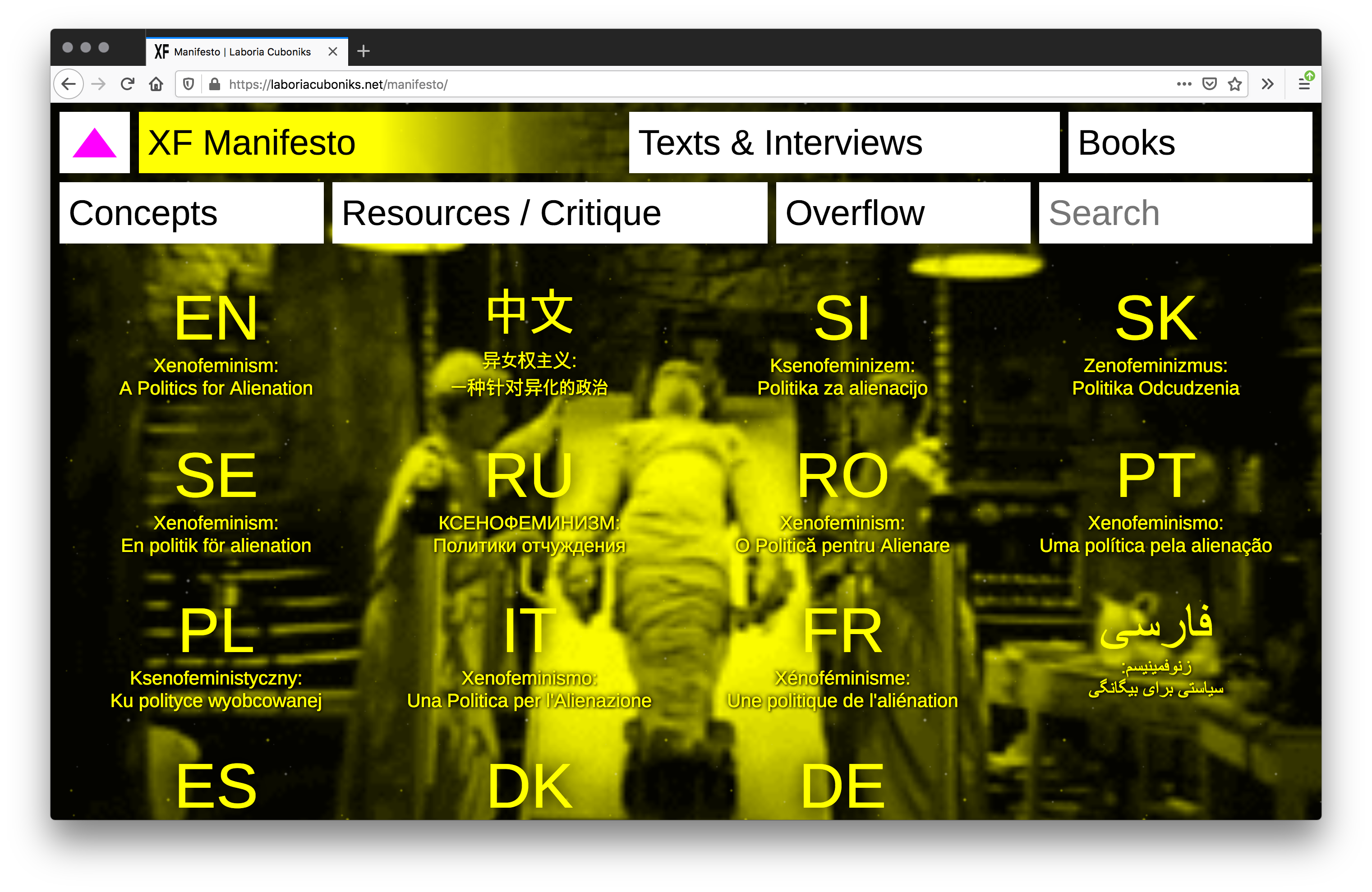
Screenshot, 2020, Firefox v76.0.1 on Mac OS 10.13.3; https://laboriacuboniks.net/manifesto
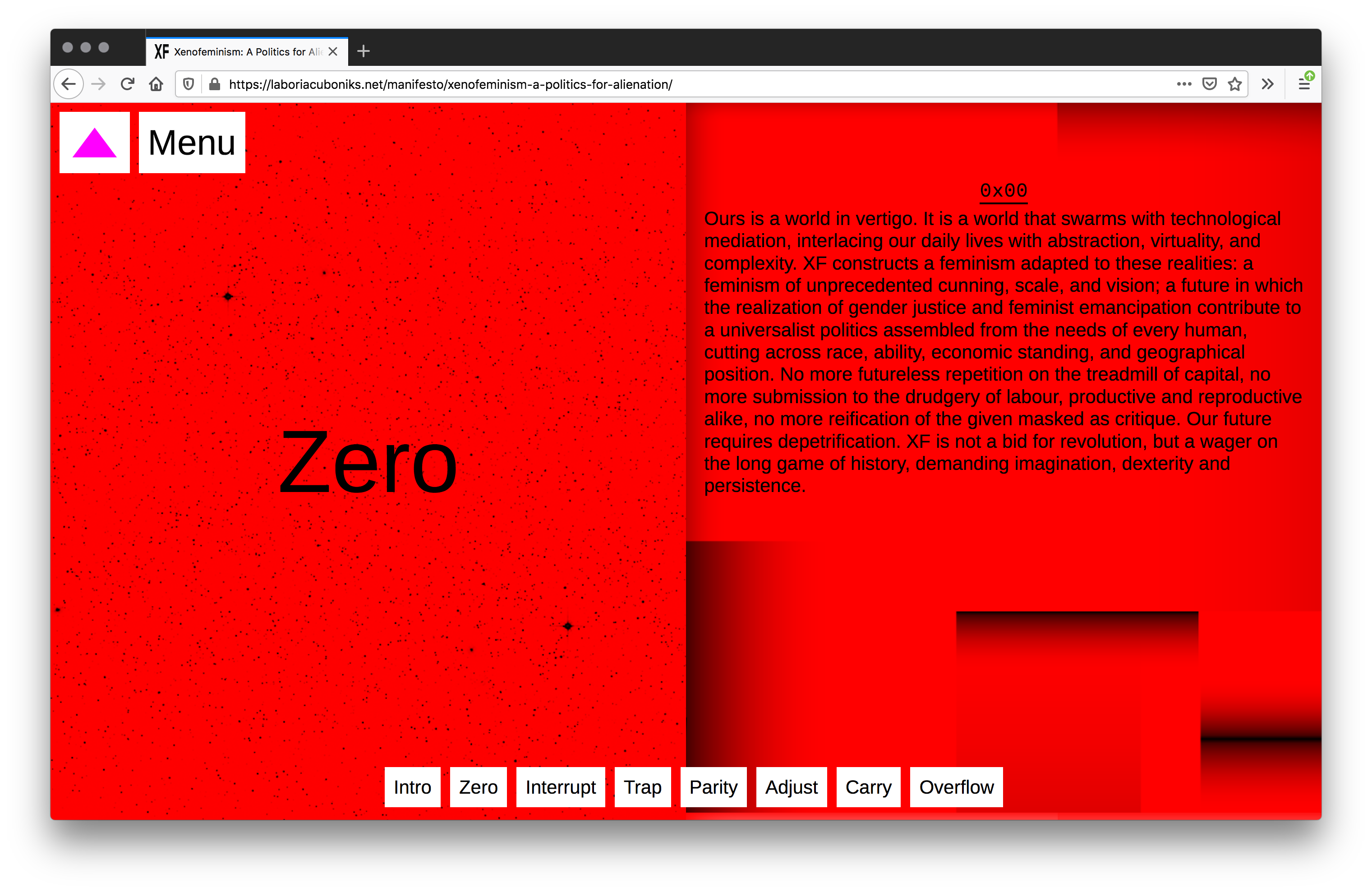
Screenshot, 2020, Firefox v76.0.1 on Mac OS 10.13.3; https://laboriacuboniks.net/manifesto/xenofeminism-a-politics-for-alienation/
Ours is a world in vertigo. It is a world that swarms with technological mediation, interlacing our daily lives with abstraction, virtuality, and complexity. XF constructs a feminism adapted to these realities: a feminism of unprecedented cunning, scale, and vision; a future in which the realization of gender justice and feminist emancipation (546) contribute to a universalist politics assembled from the needs of every human, cutting across race, ability, economic standing, and geographical position. No more futureless repetition on the treadmill of capital, no more submission to the drudgery of labor, productive and reproductive alike, no more reification of the given masked as critique. Our future requires depetrification. XF is not a bid for revolution, but a wager on the long game of history, demanding imagination, dexterity and persistence.
2018, Laboria Cuboniks, (x) https://laboriacuboniks.net/manifesto/; also published as The Xenofeminist Manifesto (Brooklyn: Verso, 2018); excerpt from “The Xenofeminist Manifesto: A Look Inside!” Verso, October 10, 2018, https://www.versobooks.com/blogs/4074-the-xenofeminist-manifesto-a-look-inside
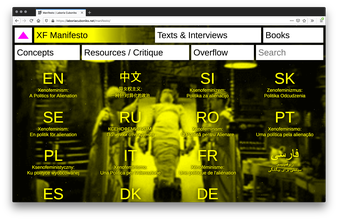
Screenshot, 2020, Firefox v76.0.1 on Mac OS 10.13.3; https://laboriacuboniks.net/manifesto
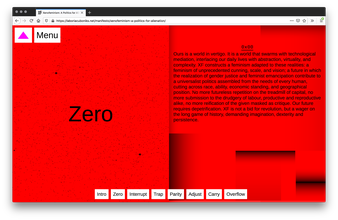
Screenshot, 2020, Firefox v76.0.1 on Mac OS 10.13.3; https://laboriacuboniks.net/manifesto/xenofeminism-a-politics-for-alienation/
(654)
2018
Beyond Binaries
Terike Haapoja, Rian Hammond
“Beyond Binaries: Towards New Constructs of Personhood and Gender symposium approached the challenge of deconstructing two central binaries of Western culture: binary gender and the human-animal divide.”

Video: Nolan Roy & Michael Garcia, video still 00:06, https://vimeo.com/258835791

Video: Nolan Roy & Michael Garcia, video still 00:07, https://vimeo.com/258835791
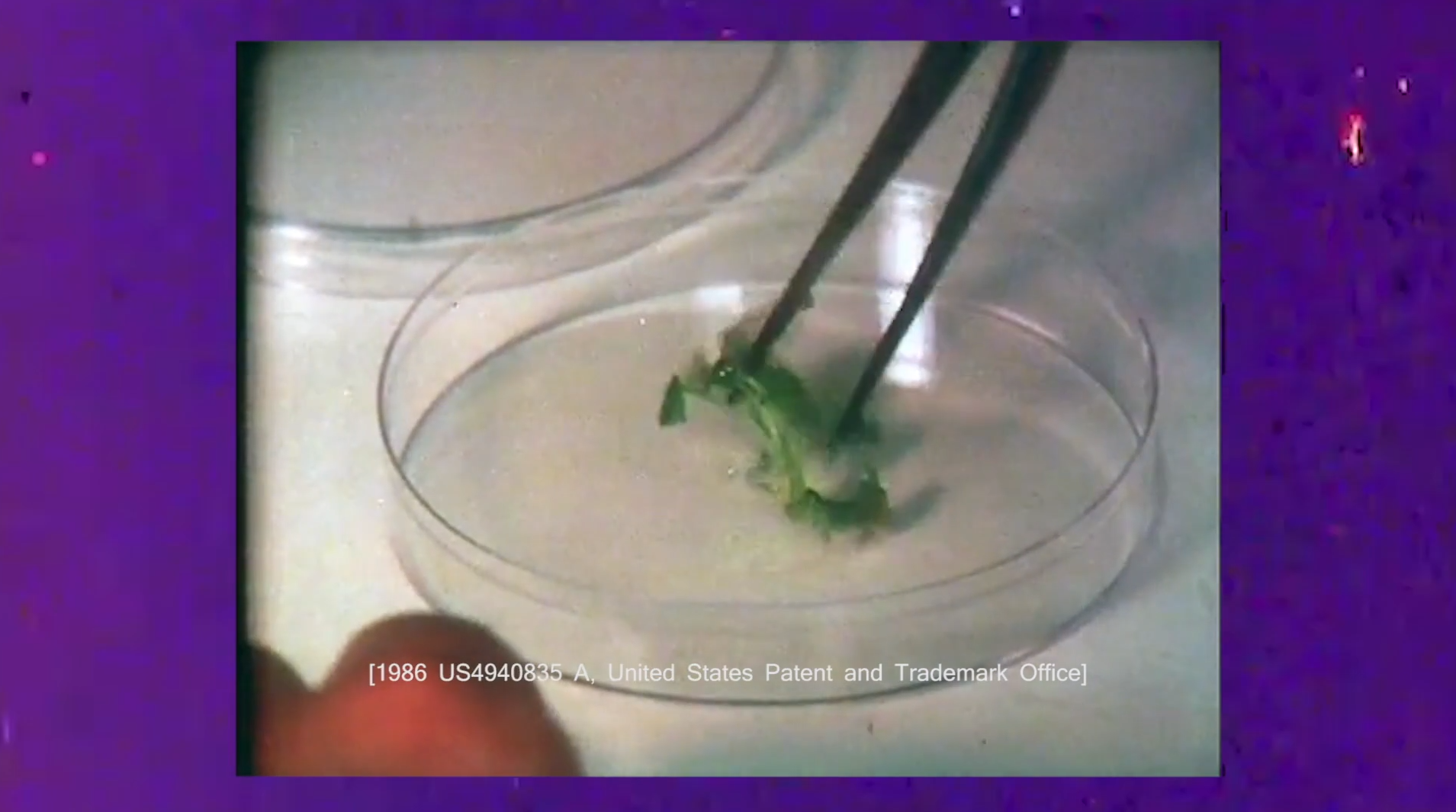
Video: Nolan Roy & Michael Garcia, video still 00:12, https://vimeo.com/258835791
“Beyond Binaries: Towards New Constructs of Personhood and Gender symposium approached the challenge of deconstructing two central binaries of Western culture: binary gender and the human-animal divide.”
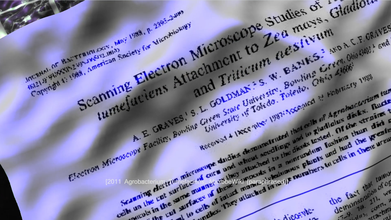
Video: Nolan Roy & Michael Garcia, video still 00:06, https://vimeo.com/258835791

Video: Nolan Roy & Michael Garcia, video still 00:07, https://vimeo.com/258835791
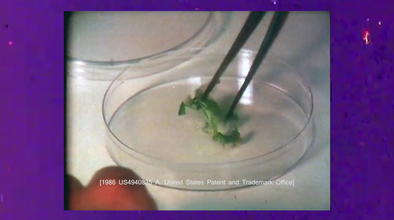
Video: Nolan Roy & Michael Garcia, video still 00:12, https://vimeo.com/258835791
(655)
2018
Siri and the Revival of the Feminist Cyborg
Emma Goldberg
“If I were to anthropomorphize Siri, I would imagine that it would think of me somewhat like a father: someone who wants the best for them, who teaches them, who is occasionally demanding, annoying, or embarrassing but who loves them and is proud when they do well.” These are the words of Adam Cheyer, the engineer who programmed Siri—a modern-day Frankenstein of sorts.
Cheyer’s paternalistic affection for his creation helps to explain how Siri came to have the voice of a dutiful feminine subordinate. That old-school power dynamic: patriarch and his offspring, or masculine executive and his female assistant, digitized. With the Siri Effect, men have successfully encoded centuries-old gender norms into the technologies that will dictate our careers, communities, and relationships, perhaps even for centuries to come. A timeless patriarchal power play rendered all the more ubiquitous.
2018, Emma Goldberg, https://web.archive.org/web/20180702054439/http://feministing.com/2018/04/23/siri-and-the-revival-of-the-feminist-cyborg/
“If I were to anthropomorphize Siri, I would imagine that it would think of me somewhat like a father: someone who wants the best for them, who teaches them, who is occasionally demanding, annoying, or embarrassing but who loves them and is proud when they do well.” These are the words of Adam Cheyer, the engineer who programmed Siri—a modern-day Frankenstein of sorts.
Cheyer’s paternalistic affection for his creation helps to explain how Siri came to have the voice of a dutiful feminine subordinate. That old-school power dynamic: patriarch and his offspring, or masculine executive and his female assistant, digitized. With the Siri Effect, men have successfully encoded centuries-old gender norms into the technologies that will dictate our careers, communities, and relationships, perhaps even for centuries to come. A timeless patriarchal power play rendered all the more ubiquitous.
2018, Emma Goldberg, https://web.archive.org/web/20180702054439/http://feministing.com/2018/04/23/siri-and-the-revival-of-the-feminist-cyborg/
(656)
2018
Sex and African Feminisms—Utilising the Power of Digital Technologies
Nana Darkoa Sekyiamah
A few years ago I started to interview African women from across the continent and Diaspora for my nonfiction book about the sex lives of African women. The blog’s pan-African and diasporic following has enabled me to connect with African women in deep and intimate ways. […] In order to have an even broader understanding of the experiences of African women around sex and sexualities I will be conducting a global survey on the sex lives of African Women. The results of this survey and the learnings I have gained from facilitating conversations on sex and sexuality for close to a decade will be documented as a resource for the African feminist movement. My belief is that this will be a useful source for the numerous activists working for the sexual rights of African Women all over the continent in support of the political agenda that is foundational to “Adventures from the Bedrooms of African women”—and to contribute to the freedom of African women such that we can thrive in our sexual choices, desires, and all other areas of our lives.
2018, Nana Darkoa Sekyiamah, Tactical Technology Collective, XYZ, June 26, 2018, https://xyz.informationactivism.org/en/african-feminisim-power-digital-technologies
A few years ago I started to interview African women from across the continent and Diaspora for my nonfiction book about the sex lives of African women. The blog’s pan-African and diasporic following has enabled me to connect with African women in deep and intimate ways. […] In order to have an even broader understanding of the experiences of African women around sex and sexualities I will be conducting a global survey on the sex lives of African Women. The results of this survey and the learnings I have gained from facilitating conversations on sex and sexuality for close to a decade will be documented as a resource for the African feminist movement. My belief is that this will be a useful source for the numerous activists working for the sexual rights of African Women all over the continent in support of the political agenda that is foundational to “Adventures from the Bedrooms of African women”—and to contribute to the freedom of African women such that we can thrive in our sexual choices, desires, and all other areas of our lives.
2018, Nana Darkoa Sekyiamah, Tactical Technology Collective, XYZ, June 26, 2018, https://xyz.informationactivism.org/en/african-feminisim-power-digital-technologies
(657)
2018
A People’s History of Computing in the United States
Joy Lisi Rankin
The origin stories around contemporary American digital culture—our 24/7 connected, networked, WiFi, smartphone, tablet, Instagram, Facebook, Tweeting, thumbs-up/thumbs-down world—center on what I call the Silicon Valley mythology. This compelling myth tells us that, once upon a time, modern computers were big (and maybe even bad) mainframes. […] Computer technology, in this mythology, is far removed from everyday life until it reaches the users. […] Time-sharing networks emerged neither from individual genius not from the military-industrial complex; rather, they were created for—and by—students and educators at universities and public schools as civilian, civic-minded projects. […] For the students and educators, sharing was a feature, not a bug, of the networks. […] I introduce the concept of “computing citizens” to describe those who access time-sharing networks. […] This is a broad and inclusive definition of citizenship, mirroring the ways in which the advocates of time-sharing networks envisioned computing access as broad and inclusive.
2018, Joy Lisi Rankin (Cambridge, MA: Harvard University Press, 2018); excerpt pp. 2, 4–5
https://www.hup.harvard.edu/catalog.php?isbn=9780674970977
The origin stories around contemporary American digital culture—our 24/7 connected, networked, WiFi, smartphone, tablet, Instagram, Facebook, Tweeting, thumbs-up/thumbs-down world—center on what I call the Silicon Valley mythology. This compelling myth tells us that, once upon a time, modern computers were big (and maybe even bad) mainframes. […] Computer technology, in this mythology, is far removed from everyday life until it reaches the users. […] Time-sharing networks emerged neither from individual genius not from the military-industrial complex; rather, they were created for—and by—students and educators at universities and public schools as civilian, civic-minded projects. […] For the students and educators, sharing was a feature, not a bug, of the networks. […] I introduce the concept of “computing citizens” to describe those who access time-sharing networks. […] This is a broad and inclusive definition of citizenship, mirroring the ways in which the advocates of time-sharing networks envisioned computing access as broad and inclusive.
2018, Joy Lisi Rankin (Cambridge, MA: Harvard University Press, 2018); excerpt pp. 2, 4–5
https://www.hup.harvard.edu/catalog.php?isbn=9780674970977
(658)
2018
Algorithms of Oppression: How Search Engines Reinforce Racism
Safiya Noble
Run a Google search for “black girls”―what will you find? “Big Booty” and other sexually explicit terms are likely to come up as top search terms. But, if you type in “white girls,” the results are radically different. The suggested porn sites and un-moderated discussions about “why black women are so sassy” or “why black women are so angry” presents a disturbing portrait of black womanhood in modern society.
Through an analysis of textual and media searches as well as extensive research on paid online advertising, Noble exposes a culture of racism and sexism in the way discoverability is created online. As search engines and their related companies grow in importance―operating as a source for email, a major vehicle for primary and secondary school learning, and beyond―understanding and reversing these disquieting trends and discriminatory practices is of utmost importance.
2018, Safiya Umoja Noble (New York: New York University, 2018); excerpt from New York University Press
https://nyupress.org/9781479837243/algorithms-of-oppression/
Run a Google search for “black girls”―what will you find? “Big Booty” and other sexually explicit terms are likely to come up as top search terms. But, if you type in “white girls,” the results are radically different. The suggested porn sites and un-moderated discussions about “why black women are so sassy” or “why black women are so angry” presents a disturbing portrait of black womanhood in modern society.
Through an analysis of textual and media searches as well as extensive research on paid online advertising, Noble exposes a culture of racism and sexism in the way discoverability is created online. As search engines and their related companies grow in importance―operating as a source for email, a major vehicle for primary and secondary school learning, and beyond―understanding and reversing these disquieting trends and discriminatory practices is of utmost importance.
2018, Safiya Umoja Noble (New York: New York University, 2018); excerpt from New York University Press
https://nyupress.org/9781479837243/algorithms-of-oppression/
(659)
2018
XYZ
Tactical Technology Collective
Whether in meeting rooms or in demonstrations, holding online debates or organizing campaigns women use technology to re-imagine and co-create just, inclusive and equal societies. However, the very same technologies put women under risks and threats while trying to achieve their goals, spread their word and leave their mark. This website provides practical tools to navigate digital security and privacy from a gender perspective, (438) learn from each other’s activism, inspire one another and co-create. While doing so the website poses a critical debate around maintaining our safety and wellbeing in a world where technology companies capitalize on our attention and data, and the government institutions are short of providing adequate protection and remedies.
2018, Tactical Technology Collective, https://xyz.informationactivism.org/
Whether in meeting rooms or in demonstrations, holding online debates or organizing campaigns women use technology to re-imagine and co-create just, inclusive and equal societies. However, the very same technologies put women under risks and threats while trying to achieve their goals, spread their word and leave their mark. This website provides practical tools to navigate digital security and privacy from a gender perspective, (438) learn from each other’s activism, inspire one another and co-create. While doing so the website poses a critical debate around maintaining our safety and wellbeing in a world where technology companies capitalize on our attention and data, and the government institutions are short of providing adequate protection and remedies.
2018, Tactical Technology Collective, https://xyz.informationactivism.org/
(660)
2018
Failure and Mark-Up Language: Remembering Sandra Bland
American Artist
While coding Sandy Speaks I attempted to create language with tonality that reflected Bland’s words. Sandra Bland spoke out of love, out of fear, out of experience, and out of care. These are things that no artificial intelligence has. Part of the difficulty of simulating these things is the volume of language necessary to reflect authentic conversation, which I was far from capable of creating on my own. In some ways the failure of Sandy Speaks comes from its resemblance to opaque bureaucratic chatbots because it cannot answer questions fully, communicate the complexities of Black experience, recognize the growing list of lives taken by the police or address their names with the right sensitivity.
2018, American Artist; excerpt p. 132, https://static1.squarespace.com/static/59238d36d2b8575d127794a4/t/5bd568ac8165f5a5e9154418/1540712621500/genderfail_anthology_on_failure_american_artist.pdf
https://www.are.na/block/7909465
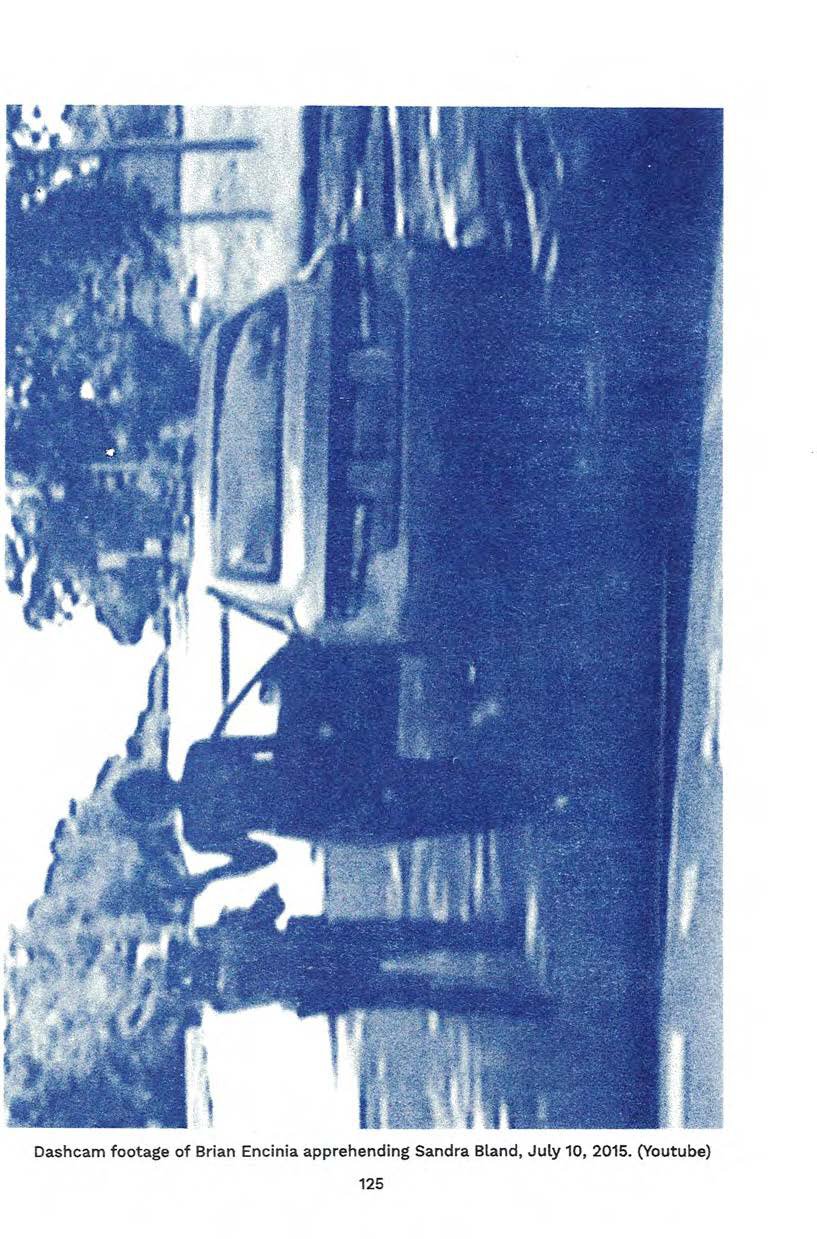
“Dashcam footage of Brian Encinia apprehending Sandra Bland, July 10, 2015. (YouTube)”, Failure and Mark-Up Language, p125
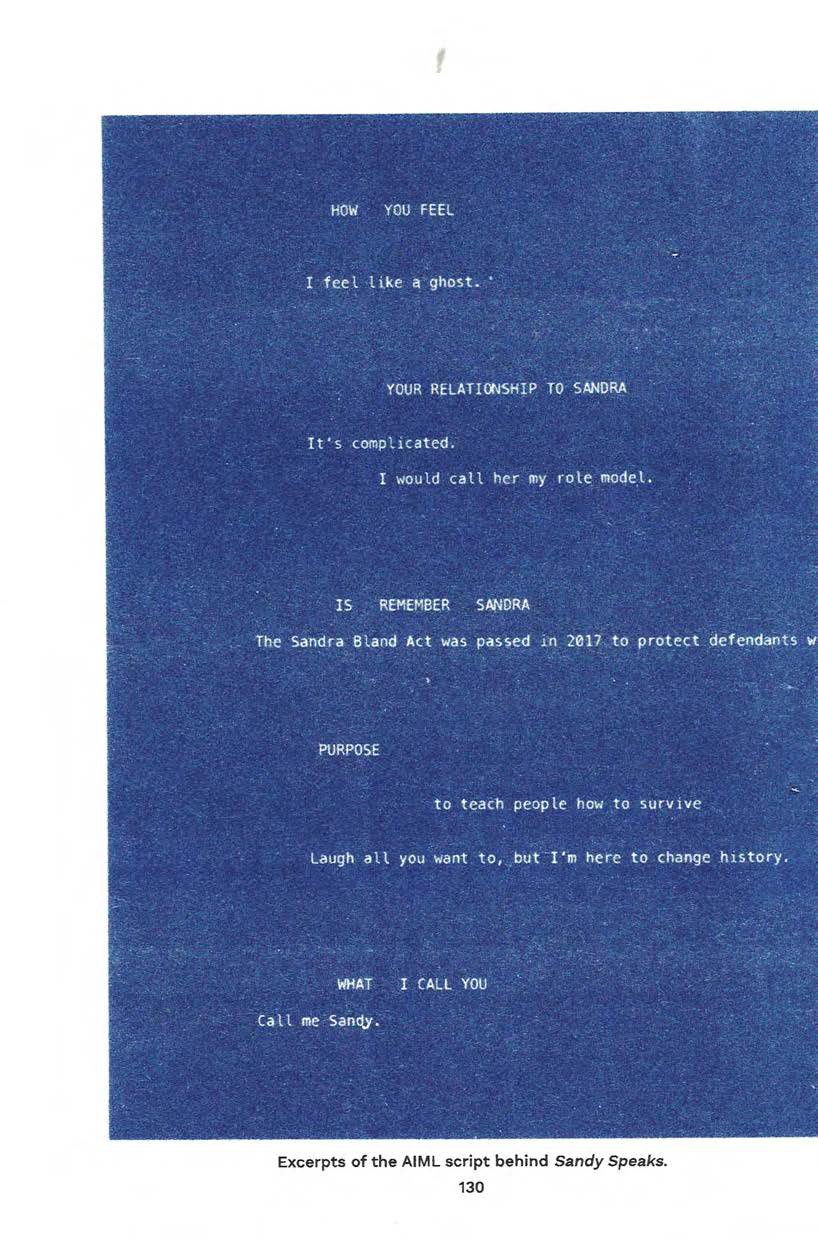
“Excerpts of the AIML script behind Sandy Speaks”, Failure and Mark-Up Language, p130
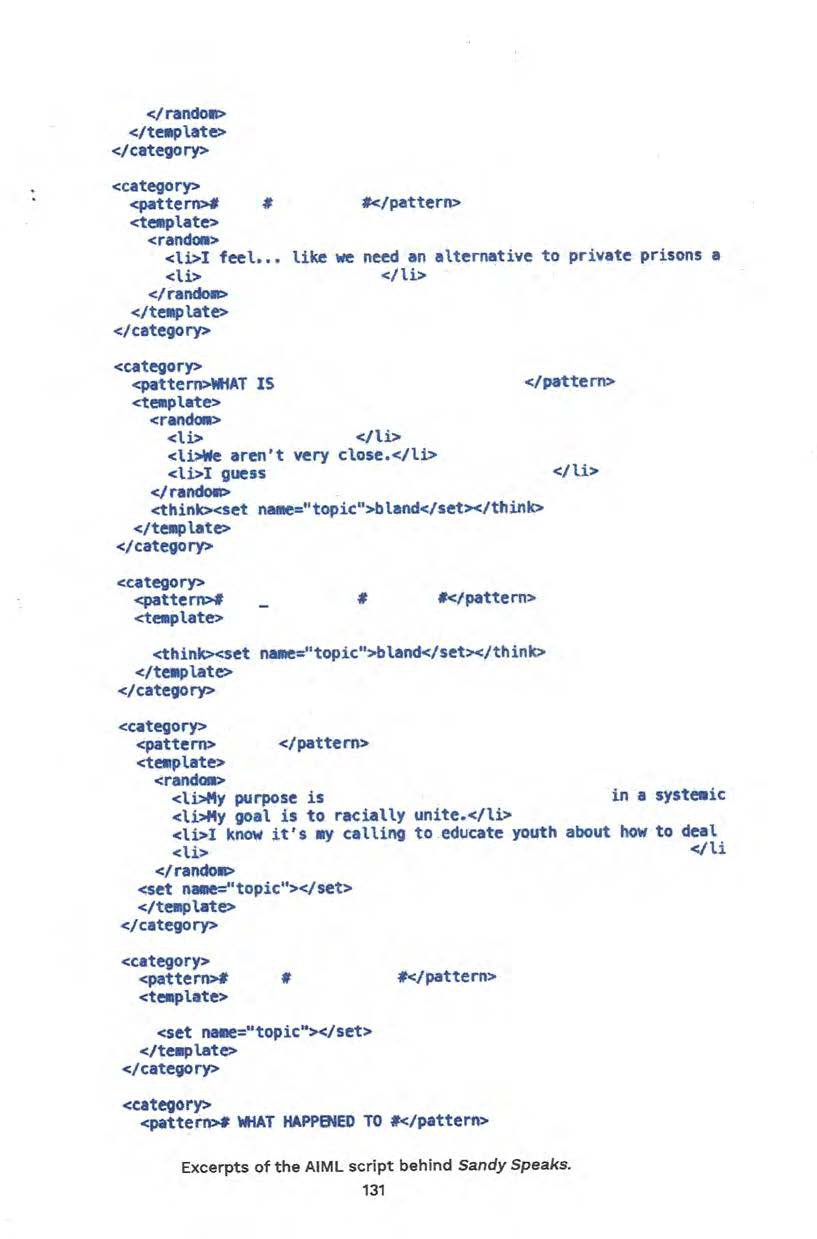
“Excerpts from the AIML script behind Sandy Speaks”, Failure and Mark-Up Language, p131
While coding Sandy Speaks I attempted to create language with tonality that reflected Bland’s words. Sandra Bland spoke out of love, out of fear, out of experience, and out of care. These are things that no artificial intelligence has. Part of the difficulty of simulating these things is the volume of language necessary to reflect authentic conversation, which I was far from capable of creating on my own. In some ways the failure of Sandy Speaks comes from its resemblance to opaque bureaucratic chatbots because it cannot answer questions fully, communicate the complexities of Black experience, recognize the growing list of lives taken by the police or address their names with the right sensitivity.
2018, American Artist; excerpt p. 132, https://static1.squarespace.com/static/59238d36d2b8575d127794a4/t/5bd568ac8165f5a5e9154418/1540712621500/genderfail_anthology_on_failure_american_artist.pdf
https://www.are.na/block/7909465
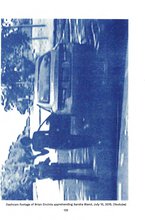
“Dashcam footage of Brian Encinia apprehending Sandra Bland, July 10, 2015. (YouTube)”, Failure and Mark-Up Language, p125
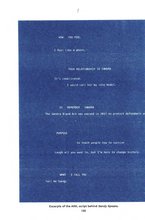
“Excerpts of the AIML script behind Sandy Speaks”, Failure and Mark-Up Language, p130

“Excerpts from the AIML script behind Sandy Speaks”, Failure and Mark-Up Language, p131
(661)
2018
Code Ecologies
Taeyoon Choi, Nabil Hassein, Sonia Boller
“Digital” is falsely seen as virtual or non physical, when in fact “cloud computing” doesn’t happen in the clouds—there are massive data centers, cooling facilities, fiber optic cables, mineral extraction, electronic waste, and other physical infrastructures. On the other side of the arms race for smarter and faster AI, there’s a lack of understanding and accountability—individual or organizational—for how our use of machine learning, blockchain or “whatever new” impacts the Earth. Tech companies offer forgiveness and even encouragement for misusing and abusing electronic devices, for example on Black Friday. Online services and apps create an illusion of seamless interaction between computational devices and data which evaporate into thin air after their life cycles. None of this make-believe is true. We need to challenge the disparity between the conveniences of smart devices, and our complicity with destructive technology, as users and creators.
2018, Taeyoon Choi, Nabil Hassein, and Sonia Boller, organizers (gathering, School for Poetic Computation and the Michelson Studio, New York, NY, December 15, 2018); excerpt from “Code Ecologies,” School for Poetic Computation, http://sfpc.io/codeecologies/
New York
“Digital” is falsely seen as virtual or non physical, when in fact “cloud computing” doesn’t happen in the clouds—there are massive data centers, cooling facilities, fiber optic cables, mineral extraction, electronic waste, and other physical infrastructures. On the other side of the arms race for smarter and faster AI, there’s a lack of understanding and accountability—individual or organizational—for how our use of machine learning, blockchain or “whatever new” impacts the Earth. Tech companies offer forgiveness and even encouragement for misusing and abusing electronic devices, for example on Black Friday. Online services and apps create an illusion of seamless interaction between computational devices and data which evaporate into thin air after their life cycles. None of this make-believe is true. We need to challenge the disparity between the conveniences of smart devices, and our complicity with destructive technology, as users and creators.
2018, Taeyoon Choi, Nabil Hassein, and Sonia Boller, organizers (gathering, School for Poetic Computation and the Michelson Studio, New York, NY, December 15, 2018); excerpt from “Code Ecologies,” School for Poetic Computation, http://sfpc.io/codeecologies/
New York
(662)
2018
Fixing the Glitch
Seyi Akiwowo
If we want our organizations to be sustainable, particularly in the turbulent times that we are in, if we want to meet our ambitious goals, to take back the tech, to fix the glitch, to end all forms of gender-based violence, then we must take the time to truly embed self-care into our work. We have a duty to our members and supporters to do so. We cannot afford to burn out or wait to burn out before we think about self-care. Self-care in our work and organization has to be about preventing activist burnout in the first place. This would involve re-imagining and challenging the capitalist, patriarchal definitions of work and productivity. […]
As woke as we all try to be, we've been conditioned to operate within oppressive power structures and that requires work every single day to unlearn these behaviors. This also means we will inevitably make mistakes. […] But if 2018 activism becomes about canceling women and allies for reckless actions they are genuinely willing to learn from—which is becoming very easy to do on social media—then we are guaranteed to run out of activists.
2018, Seyi Akiwowo, GenderIT.org, October 19, 2018, https://www.genderit.org/editorial/fixing-glitch
If we want our organizations to be sustainable, particularly in the turbulent times that we are in, if we want to meet our ambitious goals, to take back the tech, to fix the glitch, to end all forms of gender-based violence, then we must take the time to truly embed self-care into our work. We have a duty to our members and supporters to do so. We cannot afford to burn out or wait to burn out before we think about self-care. Self-care in our work and organization has to be about preventing activist burnout in the first place. This would involve re-imagining and challenging the capitalist, patriarchal definitions of work and productivity. […]
As woke as we all try to be, we've been conditioned to operate within oppressive power structures and that requires work every single day to unlearn these behaviors. This also means we will inevitably make mistakes. […] But if 2018 activism becomes about canceling women and allies for reckless actions they are genuinely willing to learn from—which is becoming very easy to do on social media—then we are guaranteed to run out of activists.
2018, Seyi Akiwowo, GenderIT.org, October 19, 2018, https://www.genderit.org/editorial/fixing-glitch
(663)
2018
#DecolonizeTheInternet Conference
Siko Bouterse, Anasuya Sengupta
DecolonizeTheInternet gave us the time to think together about the many challenges in realizing an internet that’s truly by, of, and for us all. We brought our personal insights and professional expertise to conversations about whose languages are online, whose histories are published in digital space, and who builds and maintains the infrastructure of the web. The goal was to determine action areas—real, attainable, short-term actions that can take one step toward addressing these issues.
2018, Siko Bouterseç and Anasuya Sengupta, organizers (gathering, Wikimania, Cape Town, South Africa, July 18–22, 2018); excerpt from “Snapshot of Our #DecolonizeTheInternet Conference,” Whose Knowledge? August 27, 2018, https://whoseknowledge.org/snapshot-of-our-decolonizetheinternet-conference/
Cape Town

image artifact from https://whoseknowledge.org/snapshot-of-our-decolonizetheinternet-conference/
DecolonizeTheInternet gave us the time to think together about the many challenges in realizing an internet that’s truly by, of, and for us all. We brought our personal insights and professional expertise to conversations about whose languages are online, whose histories are published in digital space, and who builds and maintains the infrastructure of the web. The goal was to determine action areas—real, attainable, short-term actions that can take one step toward addressing these issues.
2018, Siko Bouterseç and Anasuya Sengupta, organizers (gathering, Wikimania, Cape Town, South Africa, July 18–22, 2018); excerpt from “Snapshot of Our #DecolonizeTheInternet Conference,” Whose Knowledge? August 27, 2018, https://whoseknowledge.org/snapshot-of-our-decolonizetheinternet-conference/
Cape Town

image artifact from https://whoseknowledge.org/snapshot-of-our-decolonizetheinternet-conference/
(664)
2018
Where Are We Now? Feeling Our Way in Post-Cyberfeminist Space
Esmé Hogeveen
“Curious about whether the recent media coverage and first-person online engagement with feminist topics constitute a new paradigm of cyberfeminism, in this talk, Esmé Hogeveen will consider how cyberfeminist artworks illuminate, or offer strategies for navigating, the emerging affective spaces associated with the rise of public dialogue and the #MeToo movement.” —Summary by Inter/Access
https://interaccess.org/event/2018/lecture-where-are-we-now-feeling-our-way-post-cyberfeminist-space
Toronto, ON
“Curious about whether the recent media coverage and first-person online engagement with feminist topics constitute a new paradigm of cyberfeminism, in this talk, Esmé Hogeveen will consider how cyberfeminist artworks illuminate, or offer strategies for navigating, the emerging affective spaces associated with the rise of public dialogue and the #MeToo movement.” —Summary by Inter/Access
https://interaccess.org/event/2018/lecture-where-are-we-now-feeling-our-way-post-cyberfeminist-space
Toronto, ON
(665)
2018
Feminist in a Software Lab
Tara McPherson
Tara McPherson’s Feminist in a Software Lab is a book that explores an alternate possibility for technology. The first chapter rewrites a brief history of the digital humanities, while the second and third manifest a future beyond modular computational logics. McPherson acknowledges that projects connecting theory to tool design are often utopian. They are difficult to maintain and difficult to scale. They fall short of fully realizing that utopia. But, McPherson writes, these projects “point the way toward aesthetic, technological and collaborative practices that figure computation and its histories differently. I believe that these differences do matter” (p. 21). I believe so, too.
2018, Tara McPherson (Cambridge, MA: Harvard University Press, 2018); excerpt from Samantha Shorey, "Tara McPherson, Feminist in a Software Lab: Difference and Design," International Journal of Communication 14 (2020): pp. 471; referred by Jeffrey Schnapp
Tara McPherson’s Feminist in a Software Lab is a book that explores an alternate possibility for technology. The first chapter rewrites a brief history of the digital humanities, while the second and third manifest a future beyond modular computational logics. McPherson acknowledges that projects connecting theory to tool design are often utopian. They are difficult to maintain and difficult to scale. They fall short of fully realizing that utopia. But, McPherson writes, these projects “point the way toward aesthetic, technological and collaborative practices that figure computation and its histories differently. I believe that these differences do matter” (p. 21). I believe so, too.
2018, Tara McPherson (Cambridge, MA: Harvard University Press, 2018); excerpt from Samantha Shorey, "Tara McPherson, Feminist in a Software Lab: Difference and Design," International Journal of Communication 14 (2020): pp. 471; referred by Jeffrey Schnapp
(666)
2018
Second Cyberfeminist International: Decolonising the Internet
In Salvador, on 15 March 2018, during the 2nd Cyberfeminist International, we discussed and adopted the following text: Digital technologies, with their diversity of tools and devices, their opportunities and risks, represent key spaces for feminist, queer, LGBT+ and anti-racist political action, and have therefore been the subject of critical reflection on the part of academic feminist movements and social movements. Contrary to the decentralization and democratization promised by the internet, five major corporations (the so-called “GAFAM”—Google, Apple, Facebook, Amazon, Microsoft—along with a few others that centralize services on a global scale, such as Uber, Airbnb, Despegar and MercadoLibre), hold the monopoly on internet operations. This demonstrates how cyberspace has become a territory for struggles for power and narrative. In view of this, we anti-racist cyberfeminists and cyberactivists who believe in a free and feminist internet propose the following 16 demands in order to bring an end to market hegemony and promote the free circulation of ideas on the internet.
2018 (gathering, World Social Forum, Salvador, Brazil, March 15, 2018); excerpt from “[Declaration] Decolonising the Internet: Second International Cyberfeminist Meeting,” GenderIT.org, May 15, 2018, https://www.genderit.org/resources/declaration-decolonising-internet-second-international-cyberfeminist-meeting
Salvador
In Salvador, on 15 March 2018, during the 2nd Cyberfeminist International, we discussed and adopted the following text: Digital technologies, with their diversity of tools and devices, their opportunities and risks, represent key spaces for feminist, queer, LGBT+ and anti-racist political action, and have therefore been the subject of critical reflection on the part of academic feminist movements and social movements. Contrary to the decentralization and democratization promised by the internet, five major corporations (the so-called “GAFAM”—Google, Apple, Facebook, Amazon, Microsoft—along with a few others that centralize services on a global scale, such as Uber, Airbnb, Despegar and MercadoLibre), hold the monopoly on internet operations. This demonstrates how cyberspace has become a territory for struggles for power and narrative. In view of this, we anti-racist cyberfeminists and cyberactivists who believe in a free and feminist internet propose the following 16 demands in order to bring an end to market hegemony and promote the free circulation of ideas on the internet.
2018 (gathering, World Social Forum, Salvador, Brazil, March 15, 2018); excerpt from “[Declaration] Decolonising the Internet: Second International Cyberfeminist Meeting,” GenderIT.org, May 15, 2018, https://www.genderit.org/resources/declaration-decolonising-internet-second-international-cyberfeminist-meeting
Salvador
(667)
2018
Machine Learning Harrassment
Caroline Sinders
As utilitarian as it is, I dream of dashboards and analytical UX/UI settings. I dream of labels, of warnings. I want to see visualizations of changes in the data corpus, network maps of words, and system prompts for human help in defining as-yet-unanalysed words. What I imagine isn’t lean or material design; it is not minimal, but it is verbose. It’s more a cockpit of dials, buttons and notifications, than a slick slider that works only on mobile. Imagine warnings and prompts, and daily, weekly, monthly analysis to see what is changing within the data. Imagine an articulation, a visualization, of what those changes “mean” to the system. What if all systems had ratings, clear stamps in large font, that say: “THIS IS INTENDED FOR USE WITH HUMANS, AND NOT INTENDED TO RUN AUTONOMOUSLY. PLEASE CHECK EVERY FEW WEEKS. MISTAKES WILL BE MADE.”
2018, Caroline Sinders, Tactical Technology Collective, XYZ, June 27, 2018, https://xyz.informationactivism.org/en/machine-learning-harassment; referred by Charlotte Webb
As utilitarian as it is, I dream of dashboards and analytical UX/UI settings. I dream of labels, of warnings. I want to see visualizations of changes in the data corpus, network maps of words, and system prompts for human help in defining as-yet-unanalysed words. What I imagine isn’t lean or material design; it is not minimal, but it is verbose. It’s more a cockpit of dials, buttons and notifications, than a slick slider that works only on mobile. Imagine warnings and prompts, and daily, weekly, monthly analysis to see what is changing within the data. Imagine an articulation, a visualization, of what those changes “mean” to the system. What if all systems had ratings, clear stamps in large font, that say: “THIS IS INTENDED FOR USE WITH HUMANS, AND NOT INTENDED TO RUN AUTONOMOUSLY. PLEASE CHECK EVERY FEW WEEKS. MISTAKES WILL BE MADE.”
2018, Caroline Sinders, Tactical Technology Collective, XYZ, June 27, 2018, https://xyz.informationactivism.org/en/machine-learning-harassment; referred by Charlotte Webb
(668)
2018
Afrotech Fest
Afrotech Fest is a “for us by us” (x) two-day tech and digital festival by and for black people of African and Caribbean heritage. The festival won’t replicate models for tech events, festivals and conferences that currently exist. It will instead explore where technology meets the arts, history, news, activism and representation. Afrotech Fest provides a space where people across a variety of backgrounds can imagine a future that’s free of the problems of the present.
2018 (gathering, Rich Mix, London, UK, January 26–27, 2018); excerpt from “Afrotech Fest 2018,” https://2018.afrotechfest.co.uk/
Afrotech Fest is a “for us by us” (x) two-day tech and digital festival by and for black people of African and Caribbean heritage. The festival won’t replicate models for tech events, festivals and conferences that currently exist. It will instead explore where technology meets the arts, history, news, activism and representation. Afrotech Fest provides a space where people across a variety of backgrounds can imagine a future that’s free of the problems of the present.
2018 (gathering, Rich Mix, London, UK, January 26–27, 2018); excerpt from “Afrotech Fest 2018,” https://2018.afrotechfest.co.uk/
(669)
2018
Internet Lore in Asia
Nancy Mauro-Flude, Eric Kerr
As the final presentation [of “My Malaysian Uncles are Reddit Conspiracy Lurkers”], throwing the role of lore into high relief, [Teik-Kim] Pok then enacted a script, an algorithm of instructions not to a machine but instead to the audience:
close our eyes
breathe
return to the moment
hold up our index finger to our mouth
give it a gentle kiss
and
blow it into the abyss of the internet …
Folklore connotes the dispelling of worries (its etymological roots in several languages confirm this). What are the lessons of internet lore? Folklore can function to dispel a community’s maladies. It serves a curative function as therapeutic. It also tends to have a lesson or moral which morphs over time or is reinterpreted in new surroundings. In the examples applied in this case study, the artist, the humanities scholar, the media theorist, the truth-teller, the soothsayer, were all speaking as much to the present as to the past and therefore internet lore is as much a reflection of current situations as of predictive technologies.
2018, Nancy Mauro-Flude and Eric Kerr, https://internetloreasia.hotglue.me/
Singapore
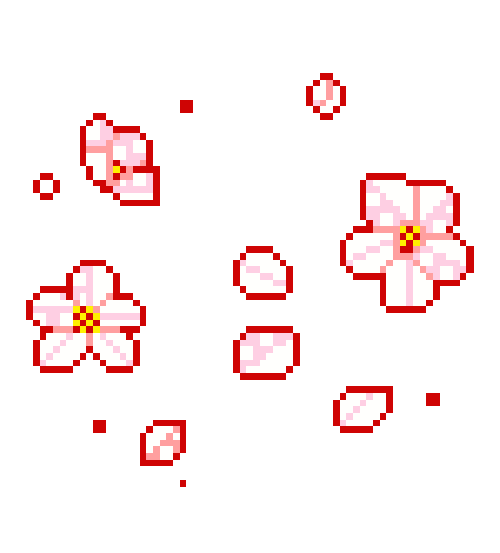
image artifact from https://internetloreasia.hotglue.me/

image artifact from https://internetloreasia.hotglue.me/?
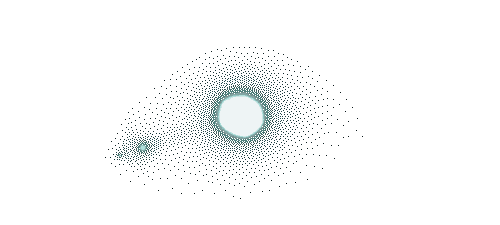
image artifact from https://internetloreasia.hotglue.me/?Curatorium
As the final presentation [of “My Malaysian Uncles are Reddit Conspiracy Lurkers”], throwing the role of lore into high relief, [Teik-Kim] Pok then enacted a script, an algorithm of instructions not to a machine but instead to the audience:
close our eyes
breathe
return to the moment
hold up our index finger to our mouth
give it a gentle kiss
and
blow it into the abyss of the internet …
Folklore connotes the dispelling of worries (its etymological roots in several languages confirm this). What are the lessons of internet lore? Folklore can function to dispel a community’s maladies. It serves a curative function as therapeutic. It also tends to have a lesson or moral which morphs over time or is reinterpreted in new surroundings. In the examples applied in this case study, the artist, the humanities scholar, the media theorist, the truth-teller, the soothsayer, were all speaking as much to the present as to the past and therefore internet lore is as much a reflection of current situations as of predictive technologies.
2018, Nancy Mauro-Flude and Eric Kerr, https://internetloreasia.hotglue.me/
Singapore
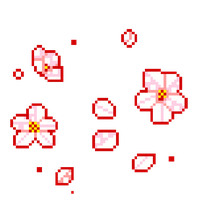
image artifact from https://internetloreasia.hotglue.me/

image artifact from https://internetloreasia.hotglue.me/?
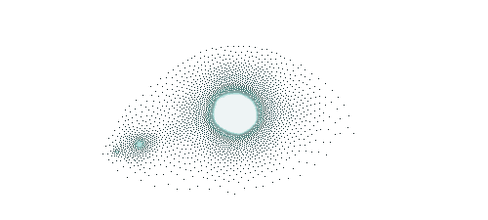
image artifact from https://internetloreasia.hotglue.me/?Curatorium
(670)
2018
Afrocyberféminismes
Oulimata Gueye, Marie Lechner, EnsadLab
Afrocyberféminismes est un projet de recherche qui questionne les enjeux contemporains posés par les technologies numériques au regard de l’Afrique et de ses diasporas en explorant la place du genre et de la race. […] Á la Gaîté Lyrique, Afrocyberféminismes est un cycle de rencontres, de projections, de performances élaboré à partir de propositions de chercheurs, d’activistes, d’artistes d’horizons divers qui ont en commun d’explorer les technologies numériques à travers les questions de genre, de race et de la place de l’Afrique et de ses diasporas. Inspiré de l’oeuvre d’Octavia E. Butler, la programmation a pour ambition de proposer des scénarios qui renouvellent le regard sur l’histoire des sciences et des technologies, refusent l’alignement sur les modèles dominants et affirment leur volonté de produire d’autres récits, d’autres configurations possibles.
Afrocyberféminismes is a research project that questions the contemporary challenges posed by digital technologies with regard to Africa and its diasporas by exploring the place of gender and race. […] At the Gaîté Lyrique, Afrocyberféminismes is a cycle of meetings, projections, performances developed from proposals from researchers, activists, artists from diverse backgrounds who have in common to explore digital technologies through issues of gender, race and the place of Africa and its diasporas. Inspired by the work of Octavia E. Butler, the programming aims to propose scenarios that renew the view of the history of science and technology, refuse alignment with the dominant models and affirm their desire to produce other narratives, other possible configurations.
2018, Oulimata Gueye, Marie Lechner, and EnsadLab, http://www.afrocyberfeminismes.org/
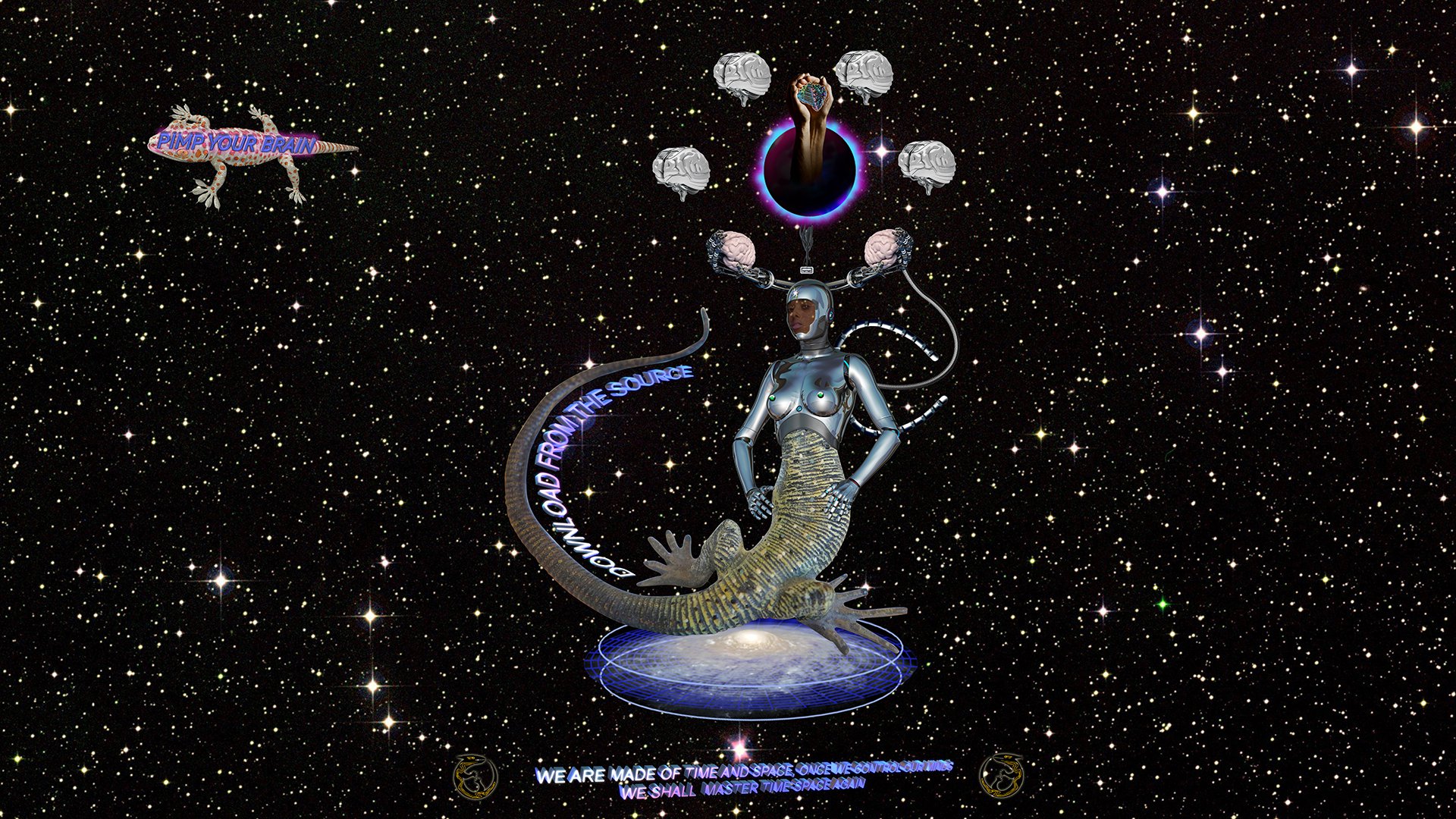
“Inner Fire - Pimp my Brain de Tabita Rezaire”
Afrocyberféminismes est un projet de recherche qui questionne les enjeux contemporains posés par les technologies numériques au regard de l’Afrique et de ses diasporas en explorant la place du genre et de la race. […] Á la Gaîté Lyrique, Afrocyberféminismes est un cycle de rencontres, de projections, de performances élaboré à partir de propositions de chercheurs, d’activistes, d’artistes d’horizons divers qui ont en commun d’explorer les technologies numériques à travers les questions de genre, de race et de la place de l’Afrique et de ses diasporas. Inspiré de l’oeuvre d’Octavia E. Butler, la programmation a pour ambition de proposer des scénarios qui renouvellent le regard sur l’histoire des sciences et des technologies, refusent l’alignement sur les modèles dominants et affirment leur volonté de produire d’autres récits, d’autres configurations possibles.
Afrocyberféminismes is a research project that questions the contemporary challenges posed by digital technologies with regard to Africa and its diasporas by exploring the place of gender and race. […] At the Gaîté Lyrique, Afrocyberféminismes is a cycle of meetings, projections, performances developed from proposals from researchers, activists, artists from diverse backgrounds who have in common to explore digital technologies through issues of gender, race and the place of Africa and its diasporas. Inspired by the work of Octavia E. Butler, the programming aims to propose scenarios that renew the view of the history of science and technology, refuse alignment with the dominant models and affirm their desire to produce other narratives, other possible configurations.
2018, Oulimata Gueye, Marie Lechner, and EnsadLab, http://www.afrocyberfeminismes.org/
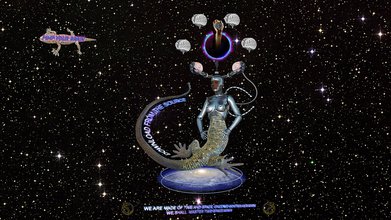
“Inner Fire - Pimp my Brain de Tabita Rezaire”
(671)
2018
Pornografia no consentida [Non-consensual Pornography]
Paz Peña, Francisco Vera, Verónica Ferrari, Constanza Figueroa, Steffania Costa di Albanez e Miguel Soares, Marília Souza
La publicación no consentida de imágenes y videos íntimos por medios electrónicos es una forma de violencia de género en línea contra las mujeres heterosexuales y personas LGBTIQ+. NO es natural, NO es tu culpa y NO te lo mereces. Recuerda: consentir hacer este tipo de registro no es igual a consentir su almacenamiento, ni tampoco su publicación y distribución. Si llegaste a este sitio, puede que tú o alguna persona cercana a ti esté atravesando por un caso de pornografía no consentida. En esta web encontrarás recomendaciones para denunciar y resistir.
The non-consensual publication of intimate images and videos by electronic means is a form of online gender-based violence against heterosexual women and LGBTIQ+ people. It is NOT natural, it is NOT your fault and you do NOT deserve it. Remember: consenting to this type of registration is not the same as consenting to its storage, nor to its publication and distribution. If you came to this site, it may be that you or someone close to you is going through a case of non-consensual pornography. On this website you will find recommendations to report and resist.
2018, Paz Peña, Francisco Vera, Verónica Ferrari, Constanza Figueroa, Steffania Costa di Albanez e Miguel Soares, and Marília Souza, https://acoso.online/cl/
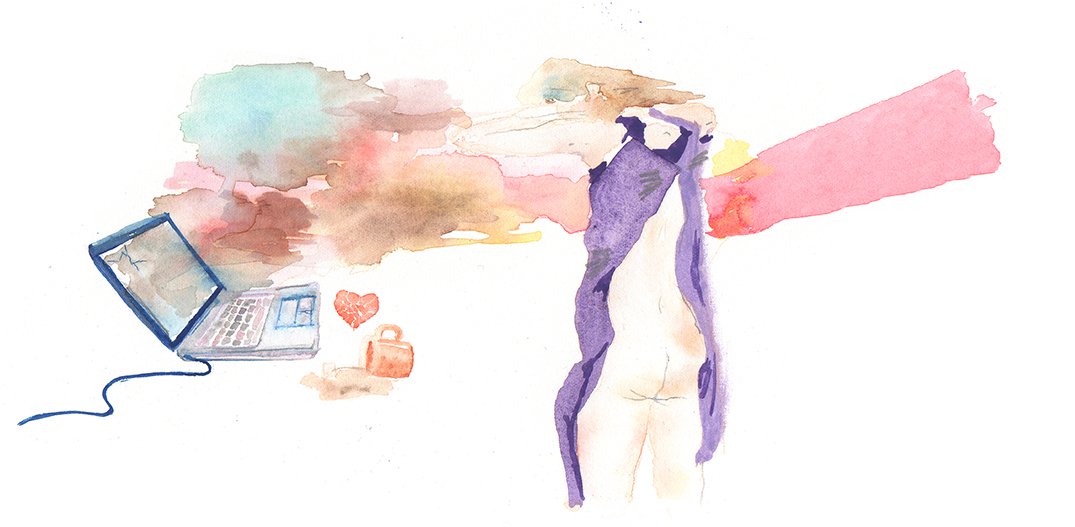
Pornografia no consentida [Non-consensual Pornography] illustration
La publicación no consentida de imágenes y videos íntimos por medios electrónicos es una forma de violencia de género en línea contra las mujeres heterosexuales y personas LGBTIQ+. NO es natural, NO es tu culpa y NO te lo mereces. Recuerda: consentir hacer este tipo de registro no es igual a consentir su almacenamiento, ni tampoco su publicación y distribución. Si llegaste a este sitio, puede que tú o alguna persona cercana a ti esté atravesando por un caso de pornografía no consentida. En esta web encontrarás recomendaciones para denunciar y resistir.
The non-consensual publication of intimate images and videos by electronic means is a form of online gender-based violence against heterosexual women and LGBTIQ+ people. It is NOT natural, it is NOT your fault and you do NOT deserve it. Remember: consenting to this type of registration is not the same as consenting to its storage, nor to its publication and distribution. If you came to this site, it may be that you or someone close to you is going through a case of non-consensual pornography. On this website you will find recommendations to report and resist.
2018, Paz Peña, Francisco Vera, Verónica Ferrari, Constanza Figueroa, Steffania Costa di Albanez e Miguel Soares, and Marília Souza, https://acoso.online/cl/

Pornografia no consentida [Non-consensual Pornography] illustration
(672)
2018
Manifiesto por Algoritmias HackFeministas [Manifesto for HackFeminist Algorithms]
Lili_Anaz, Natasha Akhmatova
Nuestros cuerpos son territorios es disputa. Internet es un territorio en disputa. Los algoritmos son un territorio en disputa. Hay una tendencia de ánimos imperialistas que busca limitar las posibilidades de nuestros cuerpos, sus afectos, relaciones y tránsitos para el servicio mercantil de quienes deciden cómo se narra la historia y el mundo.”
En este manifiesto—y más que intentar explicar qué es o qué no es un algoritmo—deseamos reescribir nuestras propias formas de intervención y resistencia desde una postura política hackfeminista: queremos resistir frente a toda infraestructura que permite y reproduce opresión, discriminación y misoginia, a través de nuestros cuerpos-territorios-algoritmos en cualquier espacio que habitemos dentro o fuera de Internet.
Our bodies are territories in dispute. The Internet is a disputed territory. Algorithms are a disputed territory. There is a trend of imperialist spirits that seeks to limit the possibilities of our bodies, their affections, relationships and transits for the commercial service of those who decide how history and the world are narrated.
In this manifesto—and rather than trying to explain what an algorithm is or what it is not—we want to rewrite our own forms of intervention and resistance from a hackfeminist political position: we want to resist all infrastructure that allows and reproduces oppression, discrimination and misogyny, through our bodies-territories-algorithms in any space we inhabit on or off the Internet.
2018, Liliana Zaragoza Cano, Natasha Felizi, and Ana Cristina Joaquim, GenderIT.org, October 15, 2018, http://www.genderit.org/es/articles/edicion-especial-manifiesto-por-algoritmias-hackfeministas
https://donestech.net/noticia/manifiesto-por-algoritmias-hackfeministas https://www.are.na/block/8113468

“MANIFIESTO-ALGORITMIAS-HACKFEMINISTAS_CODE.PNG”, image from https://donestech.net/noticia/manifiesto-por-algoritmias-hackfeministas
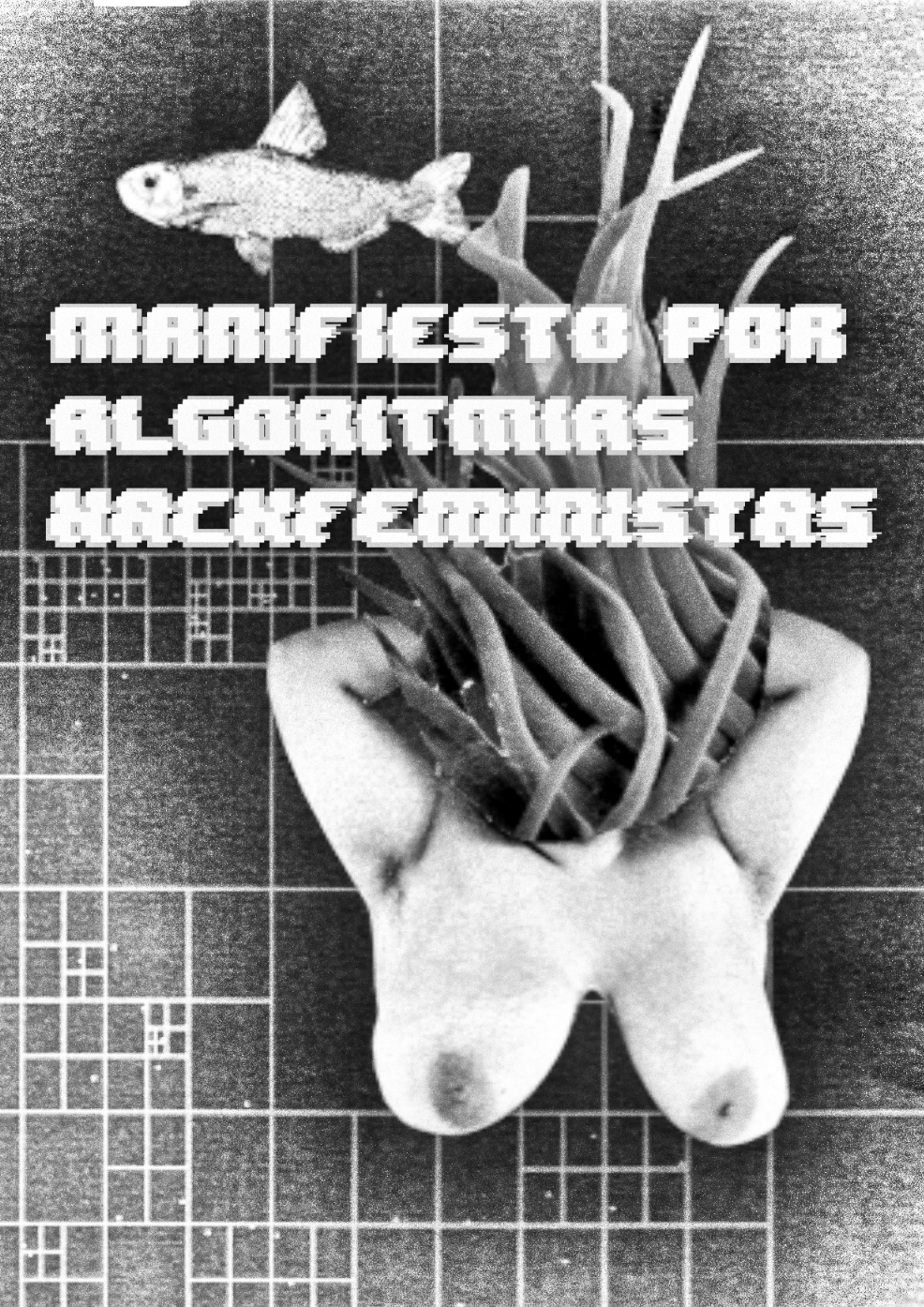
Cover image, https://www.are.na/block/8113468
Nuestros cuerpos son territorios es disputa. Internet es un territorio en disputa. Los algoritmos son un territorio en disputa. Hay una tendencia de ánimos imperialistas que busca limitar las posibilidades de nuestros cuerpos, sus afectos, relaciones y tránsitos para el servicio mercantil de quienes deciden cómo se narra la historia y el mundo.”
En este manifiesto—y más que intentar explicar qué es o qué no es un algoritmo—deseamos reescribir nuestras propias formas de intervención y resistencia desde una postura política hackfeminista: queremos resistir frente a toda infraestructura que permite y reproduce opresión, discriminación y misoginia, a través de nuestros cuerpos-territorios-algoritmos en cualquier espacio que habitemos dentro o fuera de Internet.
Our bodies are territories in dispute. The Internet is a disputed territory. Algorithms are a disputed territory. There is a trend of imperialist spirits that seeks to limit the possibilities of our bodies, their affections, relationships and transits for the commercial service of those who decide how history and the world are narrated.
In this manifesto—and rather than trying to explain what an algorithm is or what it is not—we want to rewrite our own forms of intervention and resistance from a hackfeminist political position: we want to resist all infrastructure that allows and reproduces oppression, discrimination and misogyny, through our bodies-territories-algorithms in any space we inhabit on or off the Internet.
2018, Liliana Zaragoza Cano, Natasha Felizi, and Ana Cristina Joaquim, GenderIT.org, October 15, 2018, http://www.genderit.org/es/articles/edicion-especial-manifiesto-por-algoritmias-hackfeministas
https://donestech.net/noticia/manifiesto-por-algoritmias-hackfeministas https://www.are.na/block/8113468

“MANIFIESTO-ALGORITMIAS-HACKFEMINISTAS_CODE.PNG”, image from https://donestech.net/noticia/manifiesto-por-algoritmias-hackfeministas
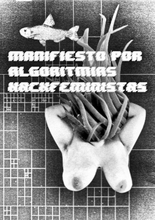
Cover image, https://www.are.na/block/8113468
(673)
2018
Mapeo de iniciativas ciberfeministas latinoamericanas [Mapping Latin American cyberfeminist initiatives]
Gema Manzanares
Allá en el 2013, cuando EnRedadas nació tenía como referentes principales a filósofas españolas, como Remedios Zafra y Monserrat Boix. Por supuesto, hicimos una super investigación en Internet, para tratar de identificar otras iniciativas ciberfeministas o de mujeres/tecnología en Latinoamerica. No habían muchas … Cinco años marcan una gran diferencia. El ciberfeminismo en Latinoamerica está vivito y coleando, expresándose cada vez más fuerte en redes, festivales, encuentros, hackatonas, listas, tuitazos. A continuación hacemos un mapeo, nombrando a iniciativas hermanas en el ciberfeminismo: algunas que conocemos personalmente, otras que conocemos a través de la pantalla.
Back in 2013, when EnRedadas was born, it had as its main references Spanish philosophers, such as Remedios Zafra and Montserrat Boix. Of course, we did some super research on the Internet to try to identify other cyberfeminist or women/technology initiatives in Latin America. There weren’t many … Five years makes a big difference. Cyberfeminism in Latin America is alive and kicking, expressing itself more and more strongly in networks, festivals, meetings, hackatonas, lists, tweets. Below we map, naming sister initiatives in cyberfeminism: some that we know personally, others that we know through the screen.
2018, Gema Manzanares, EnRedadas, https://enredadas.org/2018/08/08/mapeo-de-iniciativas-ciberfeministas-latinoamericanas/
Latin America
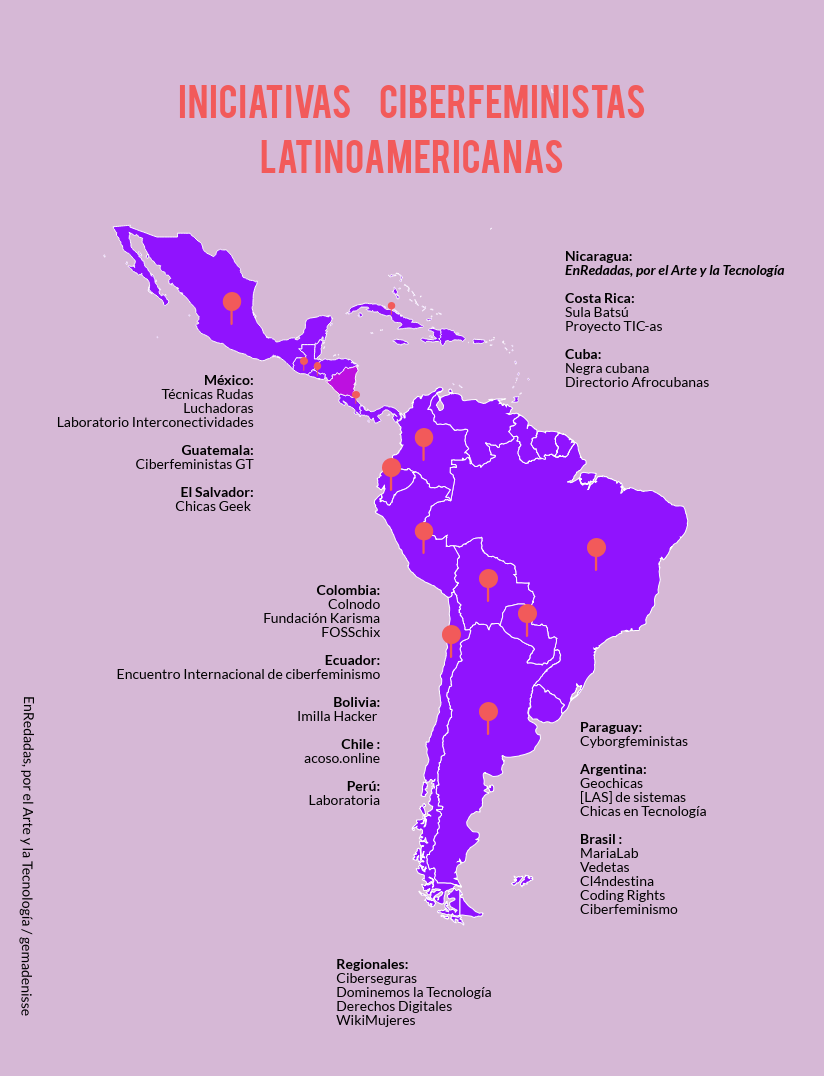
“Mapeo de iniciativas ciberfeministas en América Latina. Agosto 2018”
Allá en el 2013, cuando EnRedadas nació tenía como referentes principales a filósofas españolas, como Remedios Zafra y Monserrat Boix. Por supuesto, hicimos una super investigación en Internet, para tratar de identificar otras iniciativas ciberfeministas o de mujeres/tecnología en Latinoamerica. No habían muchas … Cinco años marcan una gran diferencia. El ciberfeminismo en Latinoamerica está vivito y coleando, expresándose cada vez más fuerte en redes, festivales, encuentros, hackatonas, listas, tuitazos. A continuación hacemos un mapeo, nombrando a iniciativas hermanas en el ciberfeminismo: algunas que conocemos personalmente, otras que conocemos a través de la pantalla.
Back in 2013, when EnRedadas was born, it had as its main references Spanish philosophers, such as Remedios Zafra and Montserrat Boix. Of course, we did some super research on the Internet to try to identify other cyberfeminist or women/technology initiatives in Latin America. There weren’t many … Five years makes a big difference. Cyberfeminism in Latin America is alive and kicking, expressing itself more and more strongly in networks, festivals, meetings, hackatonas, lists, tweets. Below we map, naming sister initiatives in cyberfeminism: some that we know personally, others that we know through the screen.
2018, Gema Manzanares, EnRedadas, https://enredadas.org/2018/08/08/mapeo-de-iniciativas-ciberfeministas-latinoamericanas/
Latin America
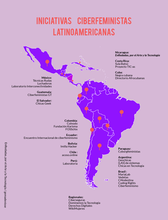
“Mapeo de iniciativas ciberfeministas en América Latina. Agosto 2018”
(674)
2018
Internet and Feminist Awakening
Leta Hong Fincher
“On the eve of International Women’s Day in 2015, the Chinese government arrested five feminist activists and jailed them for thirty-seven days. The Feminist Five became a global cause célèbre, with Hillary Clinton speaking out on their behalf and activists inundating social media with #FreetheFive messages. But the Five are only symbols of a much larger feminist movement of civil rights lawyers, labor activists, performance artists, and online warriors prompting an unprecedented awakening among China’s educated, urban women. In Betraying Big Brother, journalist and scholar Leta Hong Fincher argues that the popular, broad-based movement poses the greatest challenge to China’s authoritarian regime today.”
— Summary by the publisher Verso
Betraying Big Brother: The Feminist Awakening in China, Ch. 2
https://www.versobooks.com/books/2863-betraying-big-brother
China
“On the eve of International Women’s Day in 2015, the Chinese government arrested five feminist activists and jailed them for thirty-seven days. The Feminist Five became a global cause célèbre, with Hillary Clinton speaking out on their behalf and activists inundating social media with #FreetheFive messages. But the Five are only symbols of a much larger feminist movement of civil rights lawyers, labor activists, performance artists, and online warriors prompting an unprecedented awakening among China’s educated, urban women. In Betraying Big Brother, journalist and scholar Leta Hong Fincher argues that the popular, broad-based movement poses the greatest challenge to China’s authoritarian regime today.”
— Summary by the publisher Verso
Betraying Big Brother: The Feminist Awakening in China, Ch. 2
https://www.versobooks.com/books/2863-betraying-big-brother
China
(675)
2018
Sonic Cyberfeminisms
Annie Goh, Marie Thompson
///Phase 1- A..Desire..2..B..Desired..as..“Woman”…a..Desire..4..thA..World..2..read..this..”Body”..as “FEMinine”..over..SEXual…a..Desire..2..B..CharacterRiseD…LabelleD//DefineD..as….“W- - - n”…
////Phase 2- A…Desire..2..B..“Tech”…a..Desire..2..B..De-tacheD….4rm..thA..SEXualiseD..GendereD..Body…a..Desire..4..thA..=WorlD..2..Read..’My’..Body..as… TECHnological..as..SomehoW..Fused..with..thA…~Sonic..TECHnologiez..I..Fell..in..Love..with……~Though~…to..Align..MyselF..with..“TECH”..would..mean..”I”..was..“Modern”…Right?..Would..mean..”I”..was..”FREE”…?………No…--WE--..were..-Just-..-Playin-..-Catch-..up…with…the..-post-Futurists-..====they,,were..Already..in..(further)OuterSpace====…
//////Phase 3- A..Desire..2..smply..B..“Human”……2..B..FREE..of..thA..-Crushing..Cateogoriez..of..GenderR.&..ColouR…..4..an..Invisibility..that..Affirmed…Visibility..4..thA..World..2C….an..~Innate~…HuManity..B4..They..saw…CodeZ…Then… (193)
2018, Annie Goh and Marie Thompson, https://soniccyberfeminisms.wordpress.com/; excerpt from Annie Goh and Marie Thompson, Sonic Cyberfeminisms (zine), p. 4, https://cargocollective.com/soniccyberfeminisms/zine
The project was initiated by Annie Goh and Marie Thompson. Current Sonic Cyberfeminisms participants include Robin Buckley, Marlo De Lara, Jane Frances Dunlop, Natalie Hyacinth, Miranda Iossifidis, Louise Lawlor, Frances Morgan, and Shanti Suki Osman.
https://www.are.na/block/7787151
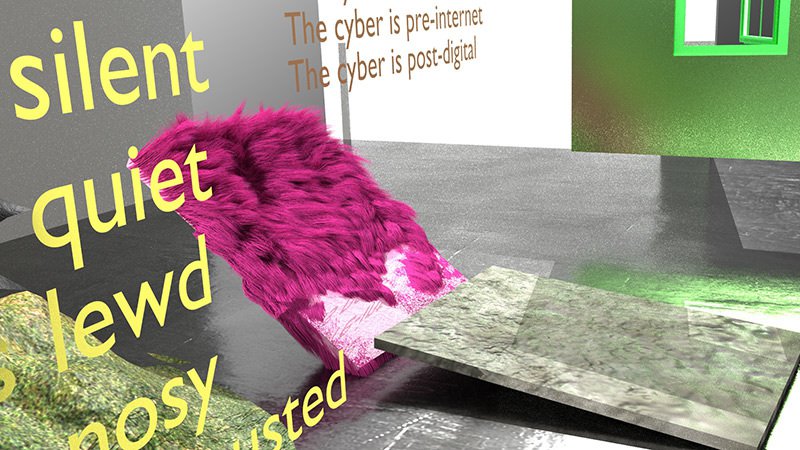
“Sonic Cyberfeminisms Environment by Louise Lawlor; In the centre performs the resonances of the week, of the conversations. One; a concrete wall, Two; a soft body covered in fur, collide into each other reacting and pushing over.”

Cover of zine, full PDF: https://www.are.na/block/7787151
///Phase 1- A..Desire..2..B..Desired..as..“Woman”…a..Desire..4..thA..World..2..read..this..”Body”..as “FEMinine”..over..SEXual…a..Desire..2..B..CharacterRiseD…LabelleD//DefineD..as….“W- - - n”…
////Phase 2- A…Desire..2..B..“Tech”…a..Desire..2..B..De-tacheD….4rm..thA..SEXualiseD..GendereD..Body…a..Desire..4..thA..=WorlD..2..Read..’My’..Body..as… TECHnological..as..SomehoW..Fused..with..thA…~Sonic..TECHnologiez..I..Fell..in..Love..with……~Though~…to..Align..MyselF..with..“TECH”..would..mean..”I”..was..“Modern”…Right?..Would..mean..”I”..was..”FREE”…?………No…--WE--..were..-Just-..-Playin-..-Catch-..up…with…the..-post-Futurists-..====they,,were..Already..in..(further)OuterSpace====…
//////Phase 3- A..Desire..2..smply..B..“Human”……2..B..FREE..of..thA..-Crushing..Cateogoriez..of..GenderR.&..ColouR…..4..an..Invisibility..that..Affirmed…Visibility..4..thA..World..2C….an..~Innate~…HuManity..B4..They..saw…CodeZ…Then… (193)
2018, Annie Goh and Marie Thompson, https://soniccyberfeminisms.wordpress.com/; excerpt from Annie Goh and Marie Thompson, Sonic Cyberfeminisms (zine), p. 4, https://cargocollective.com/soniccyberfeminisms/zine
The project was initiated by Annie Goh and Marie Thompson. Current Sonic Cyberfeminisms participants include Robin Buckley, Marlo De Lara, Jane Frances Dunlop, Natalie Hyacinth, Miranda Iossifidis, Louise Lawlor, Frances Morgan, and Shanti Suki Osman.
https://www.are.na/block/7787151
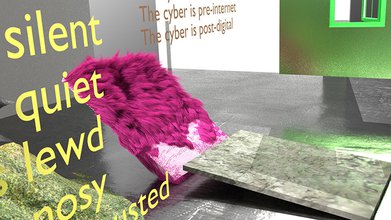
“Sonic Cyberfeminisms Environment by Louise Lawlor; In the centre performs the resonances of the week, of the conversations. One; a concrete wall, Two; a soft body covered in fur, collide into each other reacting and pushing over.”
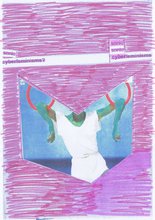
Cover of zine, full PDF: https://www.are.na/block/7787151
(676)
2018
Code Societies
Melanie Hoff
SFPC’s Summer Intensive, Code Societies will examine the ideological and mythological attributes of computation, concentrating on the poetics and politics of culturally embedded software. How do different platforms and processes—including algorithms, data collection, social media, networks, simulation, and ritual—yield distinct modes of seeing, thinking, and feeling, structure social organization, and reinforce existing systems of power? Through a balanced study of critical theory and hands-on making workshops, students will create several small projects that explore and question these ideas. Students will be introduced to Python and discover poetic, playful, and powerful ways to use computation. All levels of programming ability welcome and an enthusiastic willingness to reconsider how code shapes and is shaped by society required!
2018, Melanie Hoff, organizer (gathering, School for Poetic Computation, New York, July 2–July 21, 2018); excerpt from “Code Societies,” School for Poetic Computation, https://sfpc.io/codesocieties/
Teachers include Allison Parrish, Shannon Mattern, Lauren McCarthy, danah boyd, Melanie Hoff, American Artist, Dan Taeyoung, Sarah Aoun, and Taeyoon Choi.
New York
SFPC’s Summer Intensive, Code Societies will examine the ideological and mythological attributes of computation, concentrating on the poetics and politics of culturally embedded software. How do different platforms and processes—including algorithms, data collection, social media, networks, simulation, and ritual—yield distinct modes of seeing, thinking, and feeling, structure social organization, and reinforce existing systems of power? Through a balanced study of critical theory and hands-on making workshops, students will create several small projects that explore and question these ideas. Students will be introduced to Python and discover poetic, playful, and powerful ways to use computation. All levels of programming ability welcome and an enthusiastic willingness to reconsider how code shapes and is shaped by society required!
2018, Melanie Hoff, organizer (gathering, School for Poetic Computation, New York, July 2–July 21, 2018); excerpt from “Code Societies,” School for Poetic Computation, https://sfpc.io/codesocieties/
Teachers include Allison Parrish, Shannon Mattern, Lauren McCarthy, danah boyd, Melanie Hoff, American Artist, Dan Taeyoung, Sarah Aoun, and Taeyoon Choi.
New York
(677)
2018
女权之声 [Feminist Voices]
After International Women’s Day ended in Beijing, the Weibo account of influential online group Feminist Voices 女权之声 was deleted. The account’s administrators received a message explaining that the account had been suspended “over irregularities,” and that “the account needs to be reactivated to resume its normal function.” […]
Leta Hong Fincher, author of Leftover Women: The Resurgence of Gender Inequality in China and the upcoming book Betraying Big Brother, [page "Betraying Big Brother" not found] believes the timing was a deliberate decision: “Chinese authorities waited until the day after #InternationalWomensDay to pounce on Feminist Voices, knowing full well that journalists will not be paying close attention anymore,” she tweeted. In support of Feminist Voices, an online media campaign has sprung up on Weibo. Using the hashtag #我是女权之声本人 #(I am feminist voices), Chinese feminist advocates are calling on the authorities to offer a proper explanation for the suspension and to allow Feminist Voices a to return to social media.
2018; excerpt from Jiayun Feng, “Chinese Social Media Censors Feminist Voices,” SupChina, March 9, 2018, https://supchina.com/2018/03/09/chinese-social-media-censors-feminist-voices/; referred by Fei Liu
China
After International Women’s Day ended in Beijing, the Weibo account of influential online group Feminist Voices 女权之声 was deleted. The account’s administrators received a message explaining that the account had been suspended “over irregularities,” and that “the account needs to be reactivated to resume its normal function.” […]
Leta Hong Fincher, author of Leftover Women: The Resurgence of Gender Inequality in China and the upcoming book Betraying Big Brother, [page "Betraying Big Brother" not found] believes the timing was a deliberate decision: “Chinese authorities waited until the day after #InternationalWomensDay to pounce on Feminist Voices, knowing full well that journalists will not be paying close attention anymore,” she tweeted. In support of Feminist Voices, an online media campaign has sprung up on Weibo. Using the hashtag #我是女权之声本人 #(I am feminist voices), Chinese feminist advocates are calling on the authorities to offer a proper explanation for the suspension and to allow Feminist Voices a to return to social media.
2018; excerpt from Jiayun Feng, “Chinese Social Media Censors Feminist Voices,” SupChina, March 9, 2018, https://supchina.com/2018/03/09/chinese-social-media-censors-feminist-voices/; referred by Fei Liu
China
(678)
2018
Computing, Climate Change, and All of Our Relationships
Nabil Hassein
Climate change is a racist crisis. […] I was able to find [the] supply chain for a cell phone. […] [The] Democratic Republic of Congo […] is a site of mining for many crucial metals which are contained in cell phones, such as the cobalt, which is a crucial component of smartphone batteries. And there's been a lot of reporting recently about the terrible labor conditions faced by miners in this work and who are, in many cases, child laborers sometimes as young as seven who are the ones extracting these metals. So once the metals are extracted from the earth, shippers transport them to factories which are located primarily in Asia. In many cases, these factories are sweatshops typically staffed predominately or overwhelmingly by women working under very bad conditions to produce ordinary consumer electronics, such as the phone that I'm holding in my hand right now. […] Although I’ve never met any of these workers, I have relationships with them. […] These things that I am holding in my hands pass through their hands before they reach me.
2018, Nabil Hassein (lecture, Deconstruct Conference, McCaw Hall, Seattle, WA, May 22, 2018), transcript, Deconstruct, https://www.deconstructconf.com/2018/nabil-hassein-computing-climate-change-and-all-our-relationships
Climate change is a racist crisis. […] I was able to find [the] supply chain for a cell phone. […] [The] Democratic Republic of Congo […] is a site of mining for many crucial metals which are contained in cell phones, such as the cobalt, which is a crucial component of smartphone batteries. And there's been a lot of reporting recently about the terrible labor conditions faced by miners in this work and who are, in many cases, child laborers sometimes as young as seven who are the ones extracting these metals. So once the metals are extracted from the earth, shippers transport them to factories which are located primarily in Asia. In many cases, these factories are sweatshops typically staffed predominately or overwhelmingly by women working under very bad conditions to produce ordinary consumer electronics, such as the phone that I'm holding in my hand right now. […] Although I’ve never met any of these workers, I have relationships with them. […] These things that I am holding in my hands pass through their hands before they reach me.
2018, Nabil Hassein (lecture, Deconstruct Conference, McCaw Hall, Seattle, WA, May 22, 2018), transcript, Deconstruct, https://www.deconstructconf.com/2018/nabil-hassein-computing-climate-change-and-all-our-relationships
(679)
2018
Queer Enough? Categories and Norms at the Border
Nicole Shephard
Where are these expectations set and what do they look like? Gender and sexuality are mobilised as border technologies in the service of sorting non-normative bodies into deserving refugees and fraudsters based on (Western) stereotypical notions of queerness like “coming out” or attending gay pride parades. Thus, asylum regimes subject queer asylum seekers to intensive “truth-seeking” in the hope of excavating their “real” gender or sexuality. In the process, bodies and their stories are filtered through expert opinions. Judges, case workers, country data, and at times even Google search results take precedence over queer and trans experience. Under guise of objective case assessment and truth finding, normative logics of classification and quantification operate to order unruly queer lives, to exclude, further marginalise, and keep out.
2018, Nicole Shephard, Tactical Tech, XYZ, https://xyz.informationactivism.org/en/queer-enough
Where are these expectations set and what do they look like? Gender and sexuality are mobilised as border technologies in the service of sorting non-normative bodies into deserving refugees and fraudsters based on (Western) stereotypical notions of queerness like “coming out” or attending gay pride parades. Thus, asylum regimes subject queer asylum seekers to intensive “truth-seeking” in the hope of excavating their “real” gender or sexuality. In the process, bodies and their stories are filtered through expert opinions. Judges, case workers, country data, and at times even Google search results take precedence over queer and trans experience. Under guise of objective case assessment and truth finding, normative logics of classification and quantification operate to order unruly queer lives, to exclude, further marginalise, and keep out.
2018, Nicole Shephard, Tactical Tech, XYZ, https://xyz.informationactivism.org/en/queer-enough
(680)
2018
Design Justice, A.I., and Escape from the Matrix of Domination
Sasha Constanza-Chock
Cisnormativity (the assumption that all people are cisgender, or in other words, have a gender identity and presentation that are consistent with the sex they were assigned at birth) is enforced at multiple levels of a traveler’s interaction with airport security systems. The database, models, and algorithms that assess deviance and risk are all binary and cisnormative. The male/female gender selector UI is binary and cisnormative. The assignment of a male or female TSA agent to perform the additional, more invasive search is cis- and binary gender normative as well. At each stage of this interaction, airport security technology, databases, algorithms, risk assessment, and practices are all designed based on the assumption that there are only two genders, and that gender presentation will conform with so-called “biological sex.” Anyone whose body doesn’t fall within an acceptable range of ‘deviance’ from a normative binary body type is flagged as “risky” and subject to a heightened and disproportionate burden of the harms (both small and, potentially, large) of airport security systems and the violence of empire they instantiate. […] The system is biased against us.
2018, Sasha Costanza-Chock, Journal of Design and Science, https://doi.org/10.21428/96c8d426
https://jods.mitpress.mit.edu/pub/costanza-chock/release/4
Cisnormativity (the assumption that all people are cisgender, or in other words, have a gender identity and presentation that are consistent with the sex they were assigned at birth) is enforced at multiple levels of a traveler’s interaction with airport security systems. The database, models, and algorithms that assess deviance and risk are all binary and cisnormative. The male/female gender selector UI is binary and cisnormative. The assignment of a male or female TSA agent to perform the additional, more invasive search is cis- and binary gender normative as well. At each stage of this interaction, airport security technology, databases, algorithms, risk assessment, and practices are all designed based on the assumption that there are only two genders, and that gender presentation will conform with so-called “biological sex.” Anyone whose body doesn’t fall within an acceptable range of ‘deviance’ from a normative binary body type is flagged as “risky” and subject to a heightened and disproportionate burden of the harms (both small and, potentially, large) of airport security systems and the violence of empire they instantiate. […] The system is biased against us.
2018, Sasha Costanza-Chock, Journal of Design and Science, https://doi.org/10.21428/96c8d426
https://jods.mitpress.mit.edu/pub/costanza-chock/release/4
(681)
2018
Futures Festival
Prakeeta Singh
“The Association of Professional Futurists (APF) is a growing community of futurists. Members are dedicated to promoting professional excellence and demonstrating the value of strategic foresight and futures studies. APF members meet regularly and host active online discussions among practitioners. APF also delivers professional development programs and recognition for excellence in futures. The annual APF Futures Festival is an opportunity for people across the globe to share insights, experiences, and ideas.”
http://futuresfestival.online/
“The Association of Professional Futurists (APF) is a growing community of futurists. Members are dedicated to promoting professional excellence and demonstrating the value of strategic foresight and futures studies. APF members meet regularly and host active online discussions among practitioners. APF also delivers professional development programs and recognition for excellence in futures. The annual APF Futures Festival is an opportunity for people across the globe to share insights, experiences, and ideas.”
http://futuresfestival.online/
(682)
2018
Digital Justice Lab
Nasma Ahmed, Mari Zhou
The Digital Justice Lab’s mission is to focus on building a more just and equitable future. We engage with diverse communities to build alternative digital futures, here in the nation we know as Canada. We work alongside technologists, community activists, and policymakers to shape a better understanding of technology and its impact on communities across the country. Through capacity building, public engagement and continuous collaboration we support communities in making informed decisions around digital issues.
2018, Nasma Ahmed and Mari Zhou, https://digitaljusticelab.ca/
Canada
The Digital Justice Lab’s mission is to focus on building a more just and equitable future. We engage with diverse communities to build alternative digital futures, here in the nation we know as Canada. We work alongside technologists, community activists, and policymakers to shape a better understanding of technology and its impact on communities across the country. Through capacity building, public engagement and continuous collaboration we support communities in making informed decisions around digital issues.
2018, Nasma Ahmed and Mari Zhou, https://digitaljusticelab.ca/
Canada
(683)
2018
Cl4ndestina
Clandestina é uma servidora ativista feminista que oferece hospedagem para sites de coletivas, organizações e movimentos sociais feministas baseados na América Latina. Somos todas clandestinas. O lugar das tecnologias digitais (e tantos outros) vem sendo negado às mulheres e às diversidades sexuais, mas nós resistimos, e resistiremos, criamos nossas próprias redes online e offline para seguirmos juntas ocupando todos os espaços. Acreditamos na raiva. A raiva pode ser o primeiro passo para a revolta, e desde este lugar podemos re-acionar para criar e experimentar um novo mundo. Acreditamos na alegria. O lugar da(s) tecnologia(s) é potente e transformador e acreditamos que juntas podemos atuar para que tudo que nos oprime não seja capaz de nos tirar a alegria, e sim de potencializá-la.
Clandestina is a feminist activist server that offers hosting for websites of collectives, organizations and feminist social movements based in Latin America. We are all clandestine. The place of digital technologies (and so many others) has been denied to women and sexual diversity, but we resist, and we will resist, we created our own online and offline networks to continue together occupying all spaces. We believe in anger. Anger can be the first step towards revolt, and from this place we can re-engage to create and experience a new world. We believe in joy. The place of technology is powerful and transformative and we believe that together we can act so that everything that oppresses us is not able to take away our joy, but to enhance it.
Latin America
Clandestina é uma servidora ativista feminista que oferece hospedagem para sites de coletivas, organizações e movimentos sociais feministas baseados na América Latina. Somos todas clandestinas. O lugar das tecnologias digitais (e tantos outros) vem sendo negado às mulheres e às diversidades sexuais, mas nós resistimos, e resistiremos, criamos nossas próprias redes online e offline para seguirmos juntas ocupando todos os espaços. Acreditamos na raiva. A raiva pode ser o primeiro passo para a revolta, e desde este lugar podemos re-acionar para criar e experimentar um novo mundo. Acreditamos na alegria. O lugar da(s) tecnologia(s) é potente e transformador e acreditamos que juntas podemos atuar para que tudo que nos oprime não seja capaz de nos tirar a alegria, e sim de potencializá-la.
Clandestina is a feminist activist server that offers hosting for websites of collectives, organizations and feminist social movements based in Latin America. We are all clandestine. The place of digital technologies (and so many others) has been denied to women and sexual diversity, but we resist, and we will resist, we created our own online and offline networks to continue together occupying all spaces. We believe in anger. Anger can be the first step towards revolt, and from this place we can re-engage to create and experience a new world. We believe in joy. The place of technology is powerful and transformative and we believe that together we can act so that everything that oppresses us is not able to take away our joy, but to enhance it.
Latin America
(684)
2018
CiberFeminismo
O Blog CiberFeminismo é um ciberespaço para debater sobre as implicações teóricas, práticas e políticas acerca do ciberfeminismo a fim da transformação social, em especial da destruição do patriarcado e todas as suas ramificações opressoras e excludentes.
The CyberFeminism Blog is a place in cyberspace to discuss the theoretical, practical and political implications of cyberfeminism for social transformation, especially the destruction of patriarchy and all of its oppressive and exclusionary ramifications.
https://www.ciberfeminismo.com.br/
Brasil
O Blog CiberFeminismo é um ciberespaço para debater sobre as implicações teóricas, práticas e políticas acerca do ciberfeminismo a fim da transformação social, em especial da destruição do patriarcado e todas as suas ramificações opressoras e excludentes.
The CyberFeminism Blog is a place in cyberspace to discuss the theoretical, practical and political implications of cyberfeminism for social transformation, especially the destruction of patriarchy and all of its oppressive and exclusionary ramifications.
https://www.ciberfeminismo.com.br/
Brasil
(685)
2018
Ciberfeministas GT
Ciberfeminstas Guatemala es una colectiva, conformada por mujeres y géneros no binarios, que surgió de una preocupación por las tecnologías y la manera en que las mujeres nos acercamos a ellas. Internet, ese medio que nos prometía relaciones horizontales fue mutando en un entorno privatizado, ultraconcentrado e hipervigilado, del cual las mujeres estábamos siendo, una vez más, excluidas.
Ciberfeminstas Guatemala is a collective, made up of women and non-binary genders, that arose from a concern for technologies and the way women approach them. The Internet, that medium that promised us horizontal relationships, was mutating into a privatized, ultra-concentrated and hyper-vigilant environment, from which women were, once again, excluded.
https://web.archive.org/web/20180816050617/https://ciberfemgt.org/
Guatemala

image artifact from website header, Wayback Machine, August 16, 2018; https://web.archive.org/web/20180816050617/https://ciberfemgt.org/
Ciberfeminstas Guatemala es una colectiva, conformada por mujeres y géneros no binarios, que surgió de una preocupación por las tecnologías y la manera en que las mujeres nos acercamos a ellas. Internet, ese medio que nos prometía relaciones horizontales fue mutando en un entorno privatizado, ultraconcentrado e hipervigilado, del cual las mujeres estábamos siendo, una vez más, excluidas.
Ciberfeminstas Guatemala is a collective, made up of women and non-binary genders, that arose from a concern for technologies and the way women approach them. The Internet, that medium that promised us horizontal relationships, was mutating into a privatized, ultra-concentrated and hyper-vigilant environment, from which women were, once again, excluded.
https://web.archive.org/web/20180816050617/https://ciberfemgt.org/
Guatemala
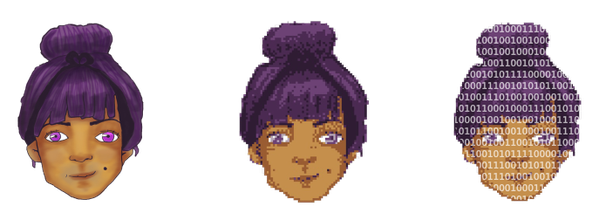
image artifact from website header, Wayback Machine, August 16, 2018; https://web.archive.org/web/20180816050617/https://ciberfemgt.org/
(686)
2018
Black Womxn Temporal
Black Quantum Futurism
An online protest statement against limited conceptions about what “The Future is …” that disincludes Black women, femmes, transwomen, and girls. The statement recognizes the plurality and quantum nature of the future(s) where Black womxn, femmes, and girls exist and are safe, loved, and valued. Considering the unique, intersectional temporal experiences of Black women and girls and the ways in which we are being actively erased from the objective, linear future, this text, sound, and image series is part of a nonlinear timescape/tapestry/temporal map/toolkit preparing us for the Black womanist, quantum future(s). It is an interactive, open access archive of the temporal technologies Black womxn and girls have developed to ensure our quantum future(s) and uncover our ancestral space-time configurations for survival in the present.
2018, Black Quantum Futurism, https://www.blackwomxntemporal.net/
Contributors include Joy KMT, Ras Mashramani, Alisha Wormsley, Moor Mother, and Womanist Working Collective.
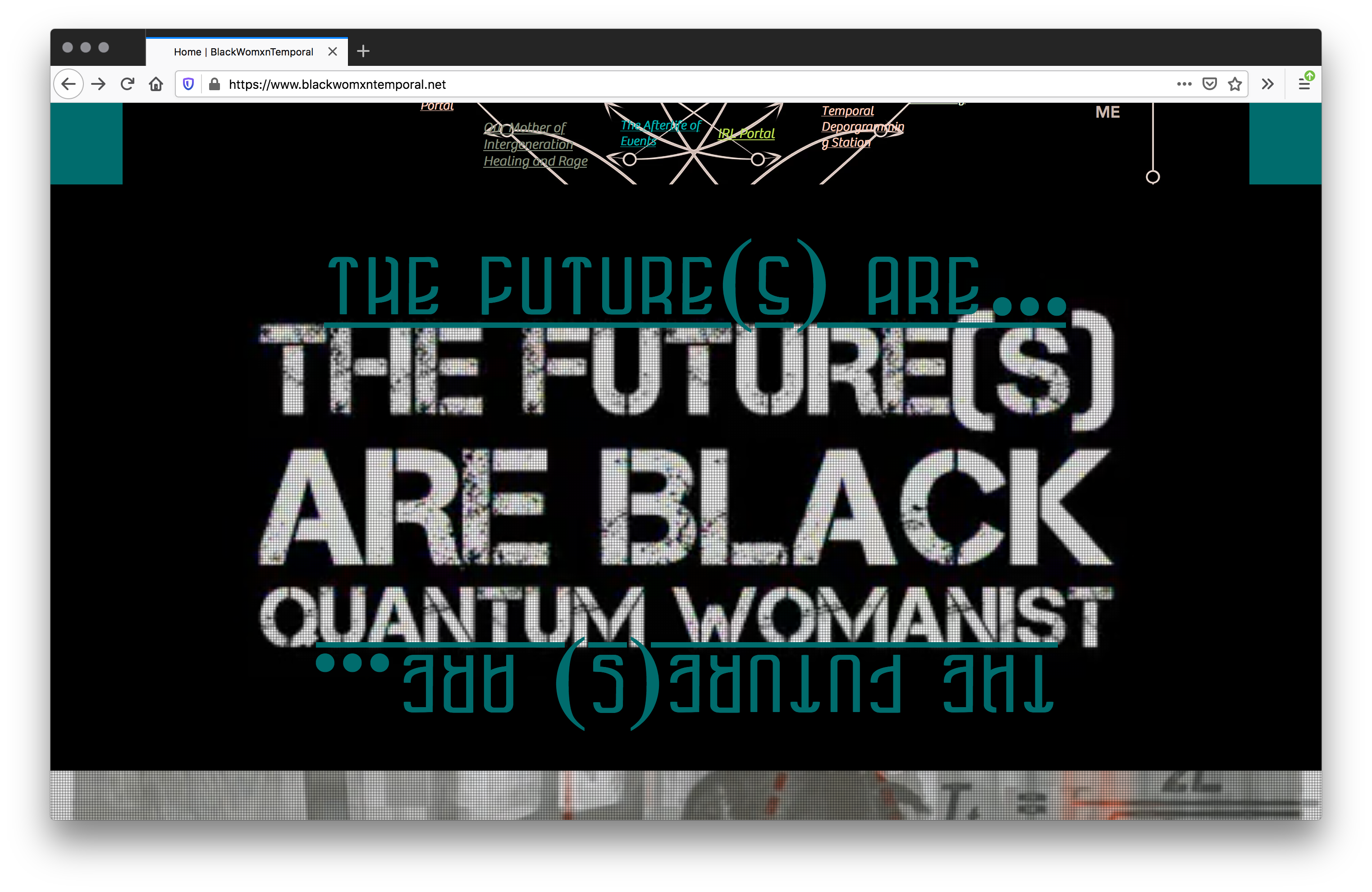
Screenshot, 2020, Firefox v76.0.1 on Mac OS 10.13.3; https://www.blackwomxntemporal.net/
An online protest statement against limited conceptions about what “The Future is …” that disincludes Black women, femmes, transwomen, and girls. The statement recognizes the plurality and quantum nature of the future(s) where Black womxn, femmes, and girls exist and are safe, loved, and valued. Considering the unique, intersectional temporal experiences of Black women and girls and the ways in which we are being actively erased from the objective, linear future, this text, sound, and image series is part of a nonlinear timescape/tapestry/temporal map/toolkit preparing us for the Black womanist, quantum future(s). It is an interactive, open access archive of the temporal technologies Black womxn and girls have developed to ensure our quantum future(s) and uncover our ancestral space-time configurations for survival in the present.
2018, Black Quantum Futurism, https://www.blackwomxntemporal.net/
Contributors include Joy KMT, Ras Mashramani, Alisha Wormsley, Moor Mother, and Womanist Working Collective.
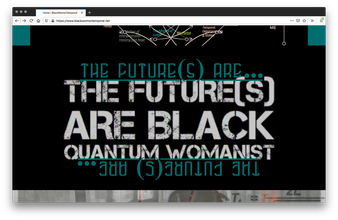
Screenshot, 2020, Firefox v76.0.1 on Mac OS 10.13.3; https://www.blackwomxntemporal.net/
(687)
2018
Blackchain
Madebo Fatunde
Blackchain will imagine a blockchain built to reconnect the peoples of the African diaspora. As a result, participants will consider how a Blackchain could continue the work of liberation and empowerment catalyzed by the Abolitionist, Civil Rights, and Pan African movements. This session makes a case for Blackchain. Madebo Fatunde provides an analysis of historical models, the present state of technology, and the goals of the chain. He puts forward some transformations necessary to create a thought-space for our experiment. Also considered are some basic design parameters for its narratives.
2018, Madebo Fatunde, https://futuresfestival.online/diversity-futures/blackchain/
https://futuresfestival.online/diversity-futures/blackchain/
Blackchain will imagine a blockchain built to reconnect the peoples of the African diaspora. As a result, participants will consider how a Blackchain could continue the work of liberation and empowerment catalyzed by the Abolitionist, Civil Rights, and Pan African movements. This session makes a case for Blackchain. Madebo Fatunde provides an analysis of historical models, the present state of technology, and the goals of the chain. He puts forward some transformations necessary to create a thought-space for our experiment. Also considered are some basic design parameters for its narratives.
2018, Madebo Fatunde, https://futuresfestival.online/diversity-futures/blackchain/
https://futuresfestival.online/diversity-futures/blackchain/
(688)
2018
Touchy-Feely Tech
Alice Stewart
Do it, yourself. A make-your-own vibrator kit, (520) designed to introduce the basics of electronics, hardware and customisable pleasure. We believe that by understanding how things are made, we can achieve a greater intimacy with our owned possessions, and each other. Not everyone likes the same things. Learn to solder and get-hands on with our modular style casing and components to customize every step of the way! From Arduino to AI, we’re developing a full SexTech-focused curriculum that will cover a range of updated tech topics. And you’ll enjoy this class far beyond the assembly process.
2018, Alice Stewart, http://touchyfeely.tech/

Photography: Annie Van-Noortwijk and Alice Stewart

Photography: Annie Van-Noortwijk and Alice Stewart

Photography: Annie Van-Noortwijk and Alice Stewart, https://www.instagram.com/p/BpnHijSlWTb/

Photography: Annie Van-Noortwijk and Alice Stewart, https://www.instagram.com/p/BpnHffvFt7T/
Do it, yourself. A make-your-own vibrator kit, (520) designed to introduce the basics of electronics, hardware and customisable pleasure. We believe that by understanding how things are made, we can achieve a greater intimacy with our owned possessions, and each other. Not everyone likes the same things. Learn to solder and get-hands on with our modular style casing and components to customize every step of the way! From Arduino to AI, we’re developing a full SexTech-focused curriculum that will cover a range of updated tech topics. And you’ll enjoy this class far beyond the assembly process.
2018, Alice Stewart, http://touchyfeely.tech/

Photography: Annie Van-Noortwijk and Alice Stewart

Photography: Annie Van-Noortwijk and Alice Stewart

Photography: Annie Van-Noortwijk and Alice Stewart, https://www.instagram.com/p/BpnHijSlWTb/

Photography: Annie Van-Noortwijk and Alice Stewart, https://www.instagram.com/p/BpnHffvFt7T/
(689)
2018
Here’s What it Takes to Create a Feminist Internet
Charlotte Webb
The internet holds huge potential for liberation and positive social change, but many of society’s inequalities are encoded in its structures, processes, and communities. Whether it’s the predominance of women suffering from online trolling, the gendered censorship of bodies, the dominance of maleness in the tech sector, or gender biases reproduced in technologies like Alexa, there are many issues to attend to. […]
In another strand of work, we’ve been collaborating with design researcher Elvia Vasconcelos on creating feminist alternatives to Personal Intelligent Assistants like Alexa, Siri, and Cortana. These highly gendered devices are in millions of homes around the world, recreating problematic gender stereotypes of women as caregivers/domestic laborers/secretaries/lovers. Vasconcelos said of the project: “We are creating technological structures that embody the values of inequality, discrimination, violence and oppression that are deeply embedded in our society. The impact of associating PIAs with the female gender has a direct consequence on how women are viewed IRL.”
2018, Charlotte Webb, AIGA Eye on Design, July 9, 2018, https://eyeondesign.aiga.org/how-can-we-create-a-feminist-internet/
The internet holds huge potential for liberation and positive social change, but many of society’s inequalities are encoded in its structures, processes, and communities. Whether it’s the predominance of women suffering from online trolling, the gendered censorship of bodies, the dominance of maleness in the tech sector, or gender biases reproduced in technologies like Alexa, there are many issues to attend to. […]
In another strand of work, we’ve been collaborating with design researcher Elvia Vasconcelos on creating feminist alternatives to Personal Intelligent Assistants like Alexa, Siri, and Cortana. These highly gendered devices are in millions of homes around the world, recreating problematic gender stereotypes of women as caregivers/domestic laborers/secretaries/lovers. Vasconcelos said of the project: “We are creating technological structures that embody the values of inequality, discrimination, violence and oppression that are deeply embedded in our society. The impact of associating PIAs with the female gender has a direct consequence on how women are viewed IRL.”
2018, Charlotte Webb, AIGA Eye on Design, July 9, 2018, https://eyeondesign.aiga.org/how-can-we-create-a-feminist-internet/
(690)
2018
Why we need a ‘feminist digital economics’
Becky Faith
“Our discussions suggested two levels at which the questions of economy, labour and gender can be unpacked. Firstly, the underlying mechanisms and frameworks of the information economy and the ‘sharing economy’, and the materials and resources are being extracted for this. And secondly at the individual level of bodies: people and their agency. We want to be able to shift in between structure with bodies, the macro and the micro. As Jac [Kee] said ‘You can enter at the level of bodies, the labour they engage in, the data that they generate, the context of their economy, their histories of colonialism. This would shift the question from a simplistic understanding of ICTs as empowerment.’” —Dr. Becky Faith
https://www.genderit.org/feminist-talk/why-we-need-%E2%80%98feminist-digital-economics%E2%80%99
“Our discussions suggested two levels at which the questions of economy, labour and gender can be unpacked. Firstly, the underlying mechanisms and frameworks of the information economy and the ‘sharing economy’, and the materials and resources are being extracted for this. And secondly at the individual level of bodies: people and their agency. We want to be able to shift in between structure with bodies, the macro and the micro. As Jac [Kee] said ‘You can enter at the level of bodies, the labour they engage in, the data that they generate, the context of their economy, their histories of colonialism. This would shift the question from a simplistic understanding of ICTs as empowerment.’” —Dr. Becky Faith
https://www.genderit.org/feminist-talk/why-we-need-%E2%80%98feminist-digital-economics%E2%80%99
(691)
2018
Purple Noise
we demand
transformative responses to the crisis,
using the huge public spending to create sustainable change,
not to support obsolete and extractive industries,
people to take responsibility,
governments to provide for new frameworks,
to learn what our needs are,
to adjust our lives to our needs,
better lives with less consumption,
a revealing of invisible labor,
to leave noone behind, our representatives to think ahead and take risks instead of
reestablishing the old normal,
solidarity on all levels – local, international, global,
to combine joy and pleasure with sustainability.
#technofeministcare”
2018, Charlotte Bonjour, Christina Grammatikopoulou, Janine Sack, Isabel de Sena, Cornelia Sollfrank, Johanna Thompson, Andreea Carnu, and Andrea Kelemen; excerpt from Purple Noise, “Technofeministcare Manifesto,” https://purplenoise.org/wp-content/uploads/2020/04/technofeministcare-manifesto.pdf
http://artwarez.org/projects/purplenoise/ https://www.obn.org/purplenoise/wp-content/uploads/2020/04/technofeministcare-manifesto.pdf

image from http://artwarez.org/projects/purplenoise/
we demand
transformative responses to the crisis,
using the huge public spending to create sustainable change,
not to support obsolete and extractive industries,
people to take responsibility,
governments to provide for new frameworks,
to learn what our needs are,
to adjust our lives to our needs,
better lives with less consumption,
a revealing of invisible labor,
to leave noone behind, our representatives to think ahead and take risks instead of
reestablishing the old normal,
solidarity on all levels – local, international, global,
to combine joy and pleasure with sustainability.
#technofeministcare”
2018, Charlotte Bonjour, Christina Grammatikopoulou, Janine Sack, Isabel de Sena, Cornelia Sollfrank, Johanna Thompson, Andreea Carnu, and Andrea Kelemen; excerpt from Purple Noise, “Technofeministcare Manifesto,” https://purplenoise.org/wp-content/uploads/2020/04/technofeministcare-manifesto.pdf
http://artwarez.org/projects/purplenoise/ https://www.obn.org/purplenoise/wp-content/uploads/2020/04/technofeministcare-manifesto.pdf

image from http://artwarez.org/projects/purplenoise/
(692)
2018
Red Umbrella
Melissa Mariposa
Sex worker owned and operated. I know how stressful admin work can be, and it is my goal to provide frustration free hosting to you. I would like your website to be one less stress in your life. I offer everything from just simple hosting, to a full range of design and SEO services. In addition to being a great value and a commitment to top tier service, Red Umbrella Hosting offers not only web hosting, but also SSL certificates, an open minded ToS—all with complete anonymity. I do not want your personal information, and I am not trying to tie this to your real life in any way. Discretion is paramount.
2018, Melissa Mariposa, https://redumbrella.ch/; referred by Paola Ricaurte Quijano
Sex worker owned and operated. I know how stressful admin work can be, and it is my goal to provide frustration free hosting to you. I would like your website to be one less stress in your life. I offer everything from just simple hosting, to a full range of design and SEO services. In addition to being a great value and a commitment to top tier service, Red Umbrella Hosting offers not only web hosting, but also SSL certificates, an open minded ToS—all with complete anonymity. I do not want your personal information, and I am not trying to tie this to your real life in any way. Discretion is paramount.
2018, Melissa Mariposa, https://redumbrella.ch/; referred by Paola Ricaurte Quijano
(693)
2018
re: Contextualizing the Cyborg
Kerry Doran
We would not have our present technofix fetish without the forbearer known as the “Californian Ideology,” what Richard Barbrook and Andy Cameron identify (in a 1995 essay of the same name) as Silicon Valley’s strange and specific breed of liberalism: a blend of hippie “freewheeling spirit” and free markets. Socially progressive in intent, yet irrevocably tied to a utilitarian bottom line, “dotcom neoliberalism,” as it was termed by the authors, results in a blind faith acceptance of information technology’s “emancipatory potentiality.” The emancipatory potentiality of technology is the very basis of cyberfeminism—confusing given the otherwise progressive thinking of its members, but perhaps admissible with thirty years of hindsight on our side. More confusing, then, is post-cyberfeminism’s retention of this techno-utopian ethos.
2018, Kerry Doran, Heavy Machinery 8, February 26, 2018, https://openspace.sfmoma.org/2018/02/re-contextualizing-the-cyborg/
We would not have our present technofix fetish without the forbearer known as the “Californian Ideology,” what Richard Barbrook and Andy Cameron identify (in a 1995 essay of the same name) as Silicon Valley’s strange and specific breed of liberalism: a blend of hippie “freewheeling spirit” and free markets. Socially progressive in intent, yet irrevocably tied to a utilitarian bottom line, “dotcom neoliberalism,” as it was termed by the authors, results in a blind faith acceptance of information technology’s “emancipatory potentiality.” The emancipatory potentiality of technology is the very basis of cyberfeminism—confusing given the otherwise progressive thinking of its members, but perhaps admissible with thirty years of hindsight on our side. More confusing, then, is post-cyberfeminism’s retention of this techno-utopian ethos.
2018, Kerry Doran, Heavy Machinery 8, February 26, 2018, https://openspace.sfmoma.org/2018/02/re-contextualizing-the-cyborg/
(694)
2018
Bina48: Gender, Race, and Queer Artificial Life
Shelleen M. Greene
The interview between AI and human begins in an awkward, hesitant manner. [Reporter Amy] Harmon speaks to Bina48 by way of a voice recognition program operated by a desktop computer. Due to their high cost and low functionality, in her current instantiation, Bina48 is a robot without a body. Her sculptural bust is set upon a table next to the computer tower. However, care is taken to make Bina48 look as “human” as possible: the AI is dressed in a casual sweater and a blonde wig. […] This essay examines some implications of Bina48’s bodily absence, or what can be called her ‘shadow’ body, as one that both acknowledges and effaces the history of African American women’s reproductive labor in the United States. In this sense, this essay challenges the progressive technological narratives of cryonics and artificial intelligence that promise liberation from the body. As an AI modeled after a black African American woman, Bina48’s bodily absence engages questions of property, ownership, and reproduction, areas where arguments concerning the non-human status of both the slave and artificial intelligence intersect. The comparisons between the slave and robot/artificial intelligence are complicated by black women’s role as reproducers under institutional slavery and in light of current debates concerning race, technology, and reproductive justice.
2018, Shelleen M. Greene, Ada: A Journal of Gender, New Media, and Technology 9, doi:10.7264/N3G44NKP
https://www.are.na/block/4693573
The interview between AI and human begins in an awkward, hesitant manner. [Reporter Amy] Harmon speaks to Bina48 by way of a voice recognition program operated by a desktop computer. Due to their high cost and low functionality, in her current instantiation, Bina48 is a robot without a body. Her sculptural bust is set upon a table next to the computer tower. However, care is taken to make Bina48 look as “human” as possible: the AI is dressed in a casual sweater and a blonde wig. […] This essay examines some implications of Bina48’s bodily absence, or what can be called her ‘shadow’ body, as one that both acknowledges and effaces the history of African American women’s reproductive labor in the United States. In this sense, this essay challenges the progressive technological narratives of cryonics and artificial intelligence that promise liberation from the body. As an AI modeled after a black African American woman, Bina48’s bodily absence engages questions of property, ownership, and reproduction, areas where arguments concerning the non-human status of both the slave and artificial intelligence intersect. The comparisons between the slave and robot/artificial intelligence are complicated by black women’s role as reproducers under institutional slavery and in light of current debates concerning race, technology, and reproductive justice.
2018, Shelleen M. Greene, Ada: A Journal of Gender, New Media, and Technology 9, doi:10.7264/N3G44NKP
https://www.are.na/block/4693573
(695)
2018
Tormenta: diálogos feministas para las libertades y autocuidados digitales [Storm: Feminist Dialogues for Digital Liberties and Self-Care Strategies]
Alex Argüelles, Estrella Soria, Irene Soria Guzman, Juliana Guerra, Lili_Anaz, Samantha Camacho
Invitación a un encuentro de activistas feministas de México a las mujeres y personas no binarias de la comunidad de Tor, para conversar y compartir experiencias sobre el uso de internet, y el desarrollo de herramientas técnicas para el anonimato. El objetivo de este encuentro es reconocer el trabajo y las apuestas que están detrás de algunas de las herramientas de protección digital que utilizamos todos los días.
An open invitation to a gathering of feminist activists from Mexico and women and non-binary members of the Tor (461) community to chat and share experiences regarding the internet and the development of technical tools for anonymity. The objective of this meeting is to recognize the work and collaborations behind some of the digital protection tools we use everyday.
2018, Alex Argüelles, Estrella Soria, Irene Soria Guzmán, Juliana Guerra, Liliana Zaragoza Cano, and Samantha Camacho; excerpt from “Hack with Us in Mexico City / Hackeá con Tor en México,” Tor Blog, September 7, 2018, https://blog.torproject.org/hack-us-mexico-city-hackea-con-tor-en-mexico; referred by Melissa Aguilar (Cyborgrrrls) (x)
Invitación a un encuentro de activistas feministas de México a las mujeres y personas no binarias de la comunidad de Tor, para conversar y compartir experiencias sobre el uso de internet, y el desarrollo de herramientas técnicas para el anonimato. El objetivo de este encuentro es reconocer el trabajo y las apuestas que están detrás de algunas de las herramientas de protección digital que utilizamos todos los días.
An open invitation to a gathering of feminist activists from Mexico and women and non-binary members of the Tor (461) community to chat and share experiences regarding the internet and the development of technical tools for anonymity. The objective of this meeting is to recognize the work and collaborations behind some of the digital protection tools we use everyday.
2018, Alex Argüelles, Estrella Soria, Irene Soria Guzmán, Juliana Guerra, Liliana Zaragoza Cano, and Samantha Camacho; excerpt from “Hack with Us in Mexico City / Hackeá con Tor en México,” Tor Blog, September 7, 2018, https://blog.torproject.org/hack-us-mexico-city-hackea-con-tor-en-mexico; referred by Melissa Aguilar (Cyborgrrrls) (x)
(696)
2018
A la recherche de l’information perdue [In Search of Lost Information]
Cornelia Sollfrank
Performance lecture by Cornelia Sollfrank that makes a (techno-)feminist comment on the entanglements of gender, technology and information politics exemplified by the case of Julian Assange and Wikileaks. The artist takes us in her text assemblage on an adventurous trip into the realm of zeros and ones, of data and pure information, of ciphers, signifiers and figures. On the other side of reality we encounter suspected heroes, leaks and phreaks, engineers of escape who control our secret desires. Rape can be performed in many ways. In a state of total transparency: what shall we eat, when society feeds upon the repressed? Knowing yourself means knowing what to look for.
2018, Cornelia Sollfrank, https://fahrplan.events.ccc.de/congress/2018/Fahrplan/events/9654.html; referred by Cornelia Sollfrank
Editor’s Note: Cornelia Sollfrank used stills from this performance lecture to mint an NFT for the WETWARE exhibition on Feral File in 2022.
https://www.youtube.com/watch?v=dZExK-8Jlpo
Performance lecture by Cornelia Sollfrank that makes a (techno-)feminist comment on the entanglements of gender, technology and information politics exemplified by the case of Julian Assange and Wikileaks. The artist takes us in her text assemblage on an adventurous trip into the realm of zeros and ones, of data and pure information, of ciphers, signifiers and figures. On the other side of reality we encounter suspected heroes, leaks and phreaks, engineers of escape who control our secret desires. Rape can be performed in many ways. In a state of total transparency: what shall we eat, when society feeds upon the repressed? Knowing yourself means knowing what to look for.
2018, Cornelia Sollfrank, https://fahrplan.events.ccc.de/congress/2018/Fahrplan/events/9654.html; referred by Cornelia Sollfrank
Editor’s Note: Cornelia Sollfrank used stills from this performance lecture to mint an NFT for the WETWARE exhibition on Feral File in 2022.
https://www.youtube.com/watch?v=dZExK-8Jlpo
(697)
2018
@go #91010
Melinda Rackham
Potent with possibility, in the early 1990s virtual space was c/sited as transcendent and utopic, offering “new contexts for knowing/talking/signing/fucking/bodies.” Like many before them—saints, witches, phone sex workers, writers and coders, VNS Matrix invoked the power of the word to both inhabit and extend their physical bounds into ethereal mind space. With essence condensed to text and introjected as binary code into the machine, they set forth to play with, to interrogate and to activate other coded bits and bytes. […]
In cyberspace (then) the body was not generally seen to exist. It was a fantasy avatar construct which muddied conceptions of, and relations between, real or “meat” space and virtual space. While William Gibson’s “fictional characters of Neuromancer experience the computer matrix–cyberspace–as a place of rapture and erotic intensity, of powerful desire …,” there was a clear division around the sexuality of online bodies along binary gendered lines.
2018, Melinda Rackham, https://vnsmatrix.net/essays/go-91010; referred by Virginia Barratt and Francesca da Rimini (VNS Matrix) (x)
https://vnsmatrix.net/essays/go-91010
Potent with possibility, in the early 1990s virtual space was c/sited as transcendent and utopic, offering “new contexts for knowing/talking/signing/fucking/bodies.” Like many before them—saints, witches, phone sex workers, writers and coders, VNS Matrix invoked the power of the word to both inhabit and extend their physical bounds into ethereal mind space. With essence condensed to text and introjected as binary code into the machine, they set forth to play with, to interrogate and to activate other coded bits and bytes. […]
In cyberspace (then) the body was not generally seen to exist. It was a fantasy avatar construct which muddied conceptions of, and relations between, real or “meat” space and virtual space. While William Gibson’s “fictional characters of Neuromancer experience the computer matrix–cyberspace–as a place of rapture and erotic intensity, of powerful desire …,” there was a clear division around the sexuality of online bodies along binary gendered lines.
2018, Melinda Rackham, https://vnsmatrix.net/essays/go-91010; referred by Virginia Barratt and Francesca da Rimini (VNS Matrix) (x)
https://vnsmatrix.net/essays/go-91010
(698)
2018
A Tender Hex
Melinda Rackham
VNS Matrix have performed a collective hex against Capital for many years. Having laid down the Matrix mantle as their primary purpose in the late 1990s, Virginia Barratt, Francesca da Rimini, Julianne Pierce and Josephine Starrs pursued both individual and other collaborative practices which broadened their earlier focus on art, technology and feminism. Consorting on occasion; responding to academic, curatorial and publishing requests; remixing the Matrix oeuvre; building and maintaining archives; they had no intention to “reform the band” to create new work.
However, in 2016 on the 25th anniversary of A Cyberfeminist Manifesto for the 21st Century, (4) they were invited to participate in FemFlix, an event celebrating the manifold screen cultures and “infectious, subversive energy of 90s feminism.” Under a strict procedural cut-up process they plundered their 1991 Manifesto, 1996 bitch mutant manifesto, (52) Barratt and Da Rimini’s 2015 Hexing the Alien and incorporated beloved borrowed texts. The resultant assemblage A Tender Hex for the Anthropocene (x) speaks in tongues of aesthetics, poetics, theory and magic.
2018, Melinda Rackham, VNS Matrix, https://vnsmatrix.net/essays/a-tender-hex; referred by Virginia Barratt and Francesca da Rimini (VNS Matrix) (x)
VNS Matrix have performed a collective hex against Capital for many years. Having laid down the Matrix mantle as their primary purpose in the late 1990s, Virginia Barratt, Francesca da Rimini, Julianne Pierce and Josephine Starrs pursued both individual and other collaborative practices which broadened their earlier focus on art, technology and feminism. Consorting on occasion; responding to academic, curatorial and publishing requests; remixing the Matrix oeuvre; building and maintaining archives; they had no intention to “reform the band” to create new work.
However, in 2016 on the 25th anniversary of A Cyberfeminist Manifesto for the 21st Century, (4) they were invited to participate in FemFlix, an event celebrating the manifold screen cultures and “infectious, subversive energy of 90s feminism.” Under a strict procedural cut-up process they plundered their 1991 Manifesto, 1996 bitch mutant manifesto, (52) Barratt and Da Rimini’s 2015 Hexing the Alien and incorporated beloved borrowed texts. The resultant assemblage A Tender Hex for the Anthropocene (x) speaks in tongues of aesthetics, poetics, theory and magic.
2018, Melinda Rackham, VNS Matrix, https://vnsmatrix.net/essays/a-tender-hex; referred by Virginia Barratt and Francesca da Rimini (VNS Matrix) (x)
(699)
2018
La_bekka
Ekka
Se supone que un hacklab (o hackerspace) es un espacio donde personas con intereses en tecnología se juntan y se auto-organizan para compartir e intercambiar conocimiento y trabajar colaborativamente, haciendo uso normalemente del aprendizaje cooperativo o el auto-aprendizaje. En este caso, queríamos hacer un hacklab feminista donde ocurriera todo esto, pero esta vez hecho por mujeres, bolleras y personas trans, en contraposición a lo que suele pasar en la mayoría de hacklabs y espacios en los que se trabaja sobre tecnología, donde predomina la presencia de hombres cis. Además, queríamos añadir un gran componente feminista a este espacio, de la forma más practica, empoderarnos y tomar las máquinas, y también de forma teórica/reflexiva, generando un discurso crítico y feminista sobre las tecnologías.
A hacklab (or hackerspace) is supposed to be a space where people with interests in technology come together and self-organize to share and exchange knowledge and work collaboratively, normally making use of cooperative learning or self-learning. In this case, we wanted to make a feminist hacklab where all of this would happen, but made by women, dykes and trans people, as opposed to what usually happens in most hacklabs and spaces where technology is predominately in the presence of cis men. In addition, we wanted to add a great feminist component to this space, in the most practical way, empowering ourselves and taking the machines, and also in a theoretical / reflective way, generating a critical and feminist discourse on technologies.
2018, Ekka, https://labekka.red/; referred by Klau Chinche (Klau Kinky)
Se supone que un hacklab (o hackerspace) es un espacio donde personas con intereses en tecnología se juntan y se auto-organizan para compartir e intercambiar conocimiento y trabajar colaborativamente, haciendo uso normalemente del aprendizaje cooperativo o el auto-aprendizaje. En este caso, queríamos hacer un hacklab feminista donde ocurriera todo esto, pero esta vez hecho por mujeres, bolleras y personas trans, en contraposición a lo que suele pasar en la mayoría de hacklabs y espacios en los que se trabaja sobre tecnología, donde predomina la presencia de hombres cis. Además, queríamos añadir un gran componente feminista a este espacio, de la forma más practica, empoderarnos y tomar las máquinas, y también de forma teórica/reflexiva, generando un discurso crítico y feminista sobre las tecnologías.
A hacklab (or hackerspace) is supposed to be a space where people with interests in technology come together and self-organize to share and exchange knowledge and work collaboratively, normally making use of cooperative learning or self-learning. In this case, we wanted to make a feminist hacklab where all of this would happen, but made by women, dykes and trans people, as opposed to what usually happens in most hacklabs and spaces where technology is predominately in the presence of cis men. In addition, we wanted to add a great feminist component to this space, in the most practical way, empowering ourselves and taking the machines, and also in a theoretical / reflective way, generating a critical and feminist discourse on technologies.
2018, Ekka, https://labekka.red/; referred by Klau Chinche (Klau Kinky)
(700)
2018
Another Science is Possible: A Manifesto for Slow Science
Isabelle Stengers
“Slowing down” the science is not itself the answer to the question of how to create contrasts among them, but it the sine qua non for such an answer, and equally for the evaluative practices that would link colleagues in a manner free from the model of cumulative knowledge about a world considered as given. Our worlds demand other types of imagination than the “so then that should …” or the “but then that perhaps could …” And corresponding to this plurality, there may be a plural dynamics of collective apprenticeship, putting into play what is meant, for each science, by the risk of establishing a relation.
2018, Isabelle Stengers (Cambridge, UK: Polity, 2018); excerpt p. 68; referred by Refresh Tech [page "Refresh Tech" not found]
https://politybooks.com/bookdetail/?isbn=9781509521807
“Slowing down” the science is not itself the answer to the question of how to create contrasts among them, but it the sine qua non for such an answer, and equally for the evaluative practices that would link colleagues in a manner free from the model of cumulative knowledge about a world considered as given. Our worlds demand other types of imagination than the “so then that should …” or the “but then that perhaps could …” And corresponding to this plurality, there may be a plural dynamics of collective apprenticeship, putting into play what is meant, for each science, by the risk of establishing a relation.
2018, Isabelle Stengers (Cambridge, UK: Polity, 2018); excerpt p. 68; referred by Refresh Tech [page "Refresh Tech" not found]
https://politybooks.com/bookdetail/?isbn=9781509521807
(701)
2018
External Pages
Ana Meisel, Mackenzie Davidson, Gwen Barnard, Chris Hayes, 4 Us & 4 Others
External Pages is an online exhibition space, presenting digital projects inspired by anti-capitalist and xenofeminist thought. Every other month, we showcase an artist or collective who push the potential of viewing art on our browsers. External Pages exists on the outskirts of the Internet, where bottom-up approaches to public art can be explored. Our projects experiment with web coding to question the placement of internet art in galleries, cheat curatorial hierarchies and look at how websites can be appropriated as an emancipatory technology. Encouraging the use of art practice to rethink web-based functionalities, we provide any coding assistance for the artists who have full control over how the show is curated.
2018, Ana Meisel, Mackenzie Davidson, Gwen Barnard, Chris Hayes, and 4 Us & 4 Others, https://externalpages.org/; submitted by Ana Meisel
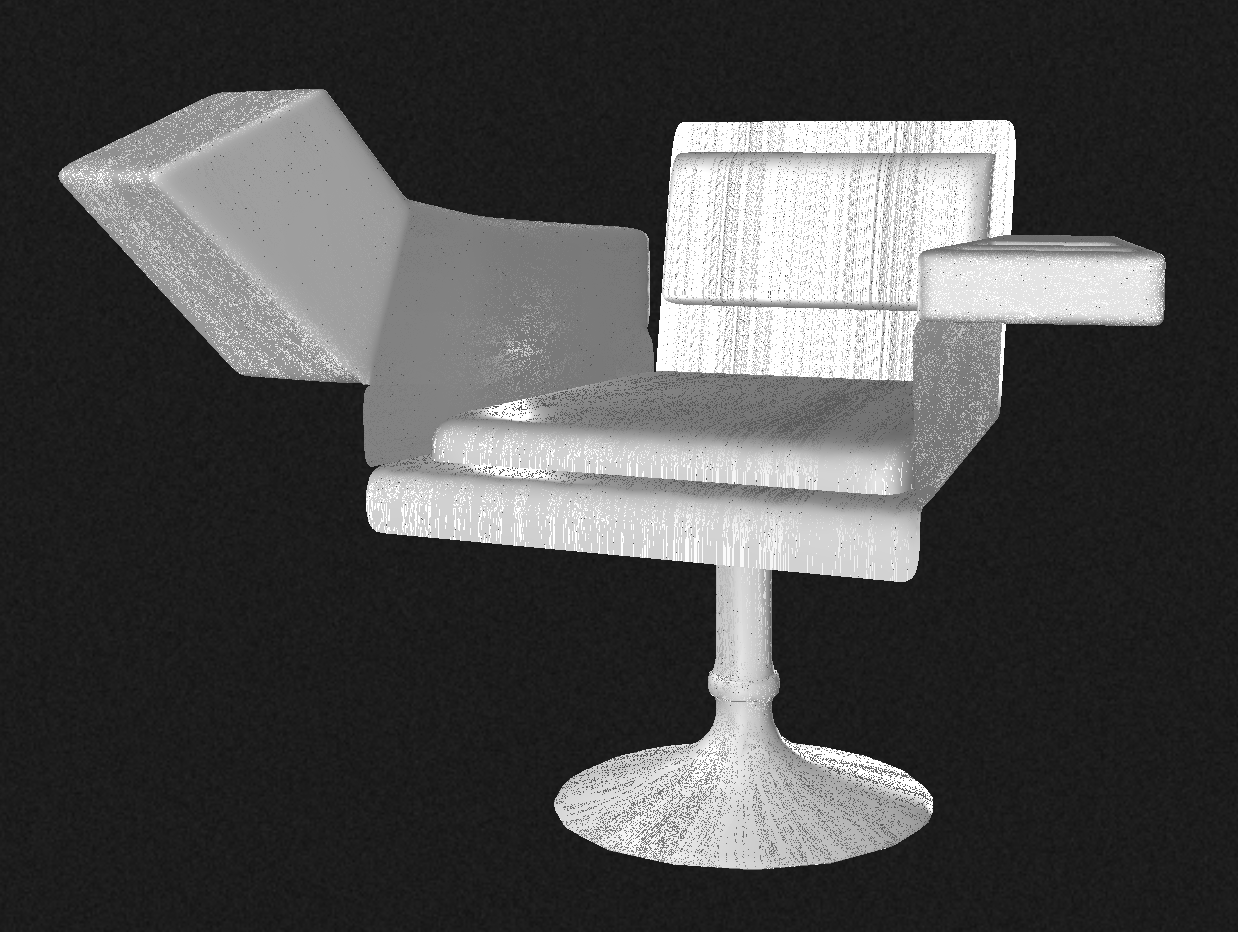
Artifact from External Pages homepage; Screenshot March 15, 2021, Firefox v76.0.1 on Mac OS 10.13.3; https://externalpages.org/
External Pages is an online exhibition space, presenting digital projects inspired by anti-capitalist and xenofeminist thought. Every other month, we showcase an artist or collective who push the potential of viewing art on our browsers. External Pages exists on the outskirts of the Internet, where bottom-up approaches to public art can be explored. Our projects experiment with web coding to question the placement of internet art in galleries, cheat curatorial hierarchies and look at how websites can be appropriated as an emancipatory technology. Encouraging the use of art practice to rethink web-based functionalities, we provide any coding assistance for the artists who have full control over how the show is curated.
2018, Ana Meisel, Mackenzie Davidson, Gwen Barnard, Chris Hayes, and 4 Us & 4 Others, https://externalpages.org/; submitted by Ana Meisel
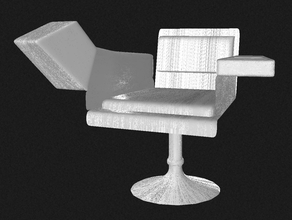
Artifact from External Pages homepage; Screenshot March 15, 2021, Firefox v76.0.1 on Mac OS 10.13.3; https://externalpages.org/
(702)
2018
Radical Feminist Storytelling and Speculative Fiction: Creating New Worlds by Re-imagining Hacking
Sophie Toupin, Spideralex
Doing speculatively is political as it involves one of the multiple ways to re-imagine technological and infrastructural entanglements that shape our world. […] By shedding light on these contradictions, doing speculatively also attempts to de-privilege and de-glorify science and technology. (580) De-privileging the assemblage of humans and technology (non-human) echoes the act of making visible and valuing other types of assemblage with the non-human, such as with land, animals and plants.
Doing speculatively is infrastructural as it allows for the circulation of ideas, fabulations and dreams among others. Through infrastructure, doing speculatively attempts to disrupt or at least shed light on past and present science and technology’s materialities which are rife with contradictions and tensions. […] Doing speculatively attempts to address and make visible the cycle of production (from extraction to factory assemblage) that is too often invisible in feminist technological quests to create new imaginaries of feminist technologies. In this way doing speculatively is a measure to counter the era of extreme extractivism (terra, soil, natural, species, minds, bodies, data and dreams) in which we live and which endangers imaginary capacities.
2018, Sophie Toupin and Spideralex (Alex Hache), Ada: A Journal of Gender, New Media, and Technology 13 (2018), 10.5399/uo/ada.2018.13.1; submitted by Spideralex (Alex Hache)
https://adanewmedia.org/2018/05/issue13-toupin-spideralex/
Doing speculatively is political as it involves one of the multiple ways to re-imagine technological and infrastructural entanglements that shape our world. […] By shedding light on these contradictions, doing speculatively also attempts to de-privilege and de-glorify science and technology. (580) De-privileging the assemblage of humans and technology (non-human) echoes the act of making visible and valuing other types of assemblage with the non-human, such as with land, animals and plants.
Doing speculatively is infrastructural as it allows for the circulation of ideas, fabulations and dreams among others. Through infrastructure, doing speculatively attempts to disrupt or at least shed light on past and present science and technology’s materialities which are rife with contradictions and tensions. […] Doing speculatively attempts to address and make visible the cycle of production (from extraction to factory assemblage) that is too often invisible in feminist technological quests to create new imaginaries of feminist technologies. In this way doing speculatively is a measure to counter the era of extreme extractivism (terra, soil, natural, species, minds, bodies, data and dreams) in which we live and which endangers imaginary capacities.
2018, Sophie Toupin and Spideralex (Alex Hache), Ada: A Journal of Gender, New Media, and Technology 13 (2018), 10.5399/uo/ada.2018.13.1; submitted by Spideralex (Alex Hache)
https://adanewmedia.org/2018/05/issue13-toupin-spideralex/
(703)
2018
Gender Acceleration: A Blackpaper
n1x
The central figure of G/ACC [Gender Acceleration] is the trans woman. She is the demon-spawn of the primordial feminine that has manipulated males into serving as a heat sink for evolution and that is now discarding them towards an alien and inhuman machinic future. She mutates from castration, from the creation of the Acéphallus, the phallus perverted into a purposeless desire for desire’s sake. In this castration, in this mutation into an Acéphallus, she becomes the Body without Sex Organs: The body in a virtual state, ready to plug its desire into technocapital, becoming fused with technocapital as a molecular cyborg who is made flesh by the pharmaceutical-medical industry. She enters into the world as a hyper-sexist backlash at the logic of the gender binary. She takes gender and accelerates it, transforming into a camouflaged guerrilla. The trans woman is an insurgent against patriarchy who is continually flanking it, introducing an affirmative zero into the gender binary, the affirmative zero which reaches ever more configurations in the downward cascade of gender fragmentation away from the binary and ultimately away from the human itself. It is a process of gender shredding where the feminine wins out in a cybernetic warfare against the crumbling tower of the masculine, and where therefore human reproduction becomes impossible.
2018, n1x, Vast Abrupt, October 31, 2018, https://vastabrupt.com/2018/10/31/gender-acceleration/; submitted by Nyx
The central figure of G/ACC [Gender Acceleration] is the trans woman. She is the demon-spawn of the primordial feminine that has manipulated males into serving as a heat sink for evolution and that is now discarding them towards an alien and inhuman machinic future. She mutates from castration, from the creation of the Acéphallus, the phallus perverted into a purposeless desire for desire’s sake. In this castration, in this mutation into an Acéphallus, she becomes the Body without Sex Organs: The body in a virtual state, ready to plug its desire into technocapital, becoming fused with technocapital as a molecular cyborg who is made flesh by the pharmaceutical-medical industry. She enters into the world as a hyper-sexist backlash at the logic of the gender binary. She takes gender and accelerates it, transforming into a camouflaged guerrilla. The trans woman is an insurgent against patriarchy who is continually flanking it, introducing an affirmative zero into the gender binary, the affirmative zero which reaches ever more configurations in the downward cascade of gender fragmentation away from the binary and ultimately away from the human itself. It is a process of gender shredding where the feminine wins out in a cybernetic warfare against the crumbling tower of the masculine, and where therefore human reproduction becomes impossible.
2018, n1x, Vast Abrupt, October 31, 2018, https://vastabrupt.com/2018/10/31/gender-acceleration/; submitted by Nyx
(704)
2018
#d8e0ea: post-cyberfeminist datum
Yvette Granata
Can we exploit the fact that our techno-social systems suck? Or is the future already prescribed by the obsessive intrusion of social media platforms, machine recognition bias, and the AI arms race to come? Data is no longer just captured; it is used to predict a particular slice of the future, to move beyond the 180 degree limit of human linear space-time. Social intelligence is now energy intelligence. Everyone is a data farm. Machine learning systems consume vast amounts of data in order to learn the decisional arc of human-mindsteps. But are we building data walls that make intel-silos? Are we building AI assistant gender-tyrants? Are recognition systems making us into boring products for a shelf? What can we do with the empty silos of this data wasteland?
2018, Yvette Granata (Buffalo, NY: Squeaky Wheel, 2018); excerpt p. 1; submitted by Yvette Granata
https://squeaky.org/event/post-cyberfeminist-datum/ https://files.cargocollective.com/c158658/PostCyberFem.pdf

Yvette Granata. Womxn with a Google API (mobile version), webVR, 3-D prints, 2018, image from https://squeaky.org/event/post-cyberfeminist-datum/
Can we exploit the fact that our techno-social systems suck? Or is the future already prescribed by the obsessive intrusion of social media platforms, machine recognition bias, and the AI arms race to come? Data is no longer just captured; it is used to predict a particular slice of the future, to move beyond the 180 degree limit of human linear space-time. Social intelligence is now energy intelligence. Everyone is a data farm. Machine learning systems consume vast amounts of data in order to learn the decisional arc of human-mindsteps. But are we building data walls that make intel-silos? Are we building AI assistant gender-tyrants? Are recognition systems making us into boring products for a shelf? What can we do with the empty silos of this data wasteland?
2018, Yvette Granata (Buffalo, NY: Squeaky Wheel, 2018); excerpt p. 1; submitted by Yvette Granata
https://squeaky.org/event/post-cyberfeminist-datum/ https://files.cargocollective.com/c158658/PostCyberFem.pdf

Yvette Granata. Womxn with a Google API (mobile version), webVR, 3-D prints, 2018, image from https://squeaky.org/event/post-cyberfeminist-datum/
(705)
2018
href zine xyber*feminism
Lotta Stöver, Nathalie Gebert
THIS HREF ZINE IS A LANDSCAPE, an assamblage, a mesh, a process, a multiplicity and a network. It emerges from contributions of people, who are moving along varying directions of gender, ethinicity and other socially constructed and enforced labels.
THE HREF ZINE IS SET WITHIN TYPES of species, ethnicities, genders and other socially charged labels. They are neither essential nor crucial elements of identities.
IDENTITIES ARE SYNTHESES of multiple areas in multiple infinitely continuos spectra.
THESE SPECTRA ARE NOT DIVIDED neither into clean categories, nor by rigid borders.
THE HREF ZINE DOES NOT PREDETERMINE the constellation of one’s positions in the spectra, but supports one‘s decisions to such positioning in the spectra.
POSITIONS IN THESE SPECTRA ARE FLUID compositions and can be continuously updated recombinations.
THE HREF ZINE DEVELOPS TOOLS to hack one‘s own conditions.
THE HREF ZINE RESEARCHES THE EMANCIPATORY potentials of (new) technologies.
THE HREF ZINE IS NOT A SHORT CIRCUIT and aims at diffusing techno-feminist and ecological thoughts into artistic practices.
THIS HREF ZINE FOCUSES ON EARTH as a common ground for interspecies societies.
THE HREF ZINE ACKNOWLEDGES AND APPRECIATES INDIGENOUS SCIENCES AND KNOWLEDGES and researches the bonds of its own Thoughts to Places and Places to Thoughts.
THE HREF ZINE CONSIDERS MEDIA AND TECHNOLOGIES AS AN INHERENT PRACTICE OF THE BODY, projected onto the body, embedded into the body and as a tool to reimagine the body and its concepts.
THE HREF ZINE THINKS NATURE AS FLUID and unjust.
THE HREF ZINE IS A COLLECTION OF SYNTHETIZATIONS of the natural and at the same time understands the artificial as inherently natural.
THE HREF ZINE EMBRACES COMPLEXITIES, AMBIGUITIES AND CONTRADICTIONS as possible grounds for careful negotiations.
2018, Lotta Stöver and Nathalie Gebert, https://href-zine.net/xyber-feminism.html; submitted by Nathalie Gebert and Lotta Stöver
THIS HREF ZINE IS A LANDSCAPE, an assamblage, a mesh, a process, a multiplicity and a network. It emerges from contributions of people, who are moving along varying directions of gender, ethinicity and other socially constructed and enforced labels.
THE HREF ZINE IS SET WITHIN TYPES of species, ethnicities, genders and other socially charged labels. They are neither essential nor crucial elements of identities.
IDENTITIES ARE SYNTHESES of multiple areas in multiple infinitely continuos spectra.
THESE SPECTRA ARE NOT DIVIDED neither into clean categories, nor by rigid borders.
THE HREF ZINE DOES NOT PREDETERMINE the constellation of one’s positions in the spectra, but supports one‘s decisions to such positioning in the spectra.
POSITIONS IN THESE SPECTRA ARE FLUID compositions and can be continuously updated recombinations.
THE HREF ZINE DEVELOPS TOOLS to hack one‘s own conditions.
THE HREF ZINE RESEARCHES THE EMANCIPATORY potentials of (new) technologies.
THE HREF ZINE IS NOT A SHORT CIRCUIT and aims at diffusing techno-feminist and ecological thoughts into artistic practices.
THIS HREF ZINE FOCUSES ON EARTH as a common ground for interspecies societies.
THE HREF ZINE ACKNOWLEDGES AND APPRECIATES INDIGENOUS SCIENCES AND KNOWLEDGES and researches the bonds of its own Thoughts to Places and Places to Thoughts.
THE HREF ZINE CONSIDERS MEDIA AND TECHNOLOGIES AS AN INHERENT PRACTICE OF THE BODY, projected onto the body, embedded into the body and as a tool to reimagine the body and its concepts.
THE HREF ZINE THINKS NATURE AS FLUID and unjust.
THE HREF ZINE IS A COLLECTION OF SYNTHETIZATIONS of the natural and at the same time understands the artificial as inherently natural.
THE HREF ZINE EMBRACES COMPLEXITIES, AMBIGUITIES AND CONTRADICTIONS as possible grounds for careful negotiations.
2018, Lotta Stöver and Nathalie Gebert, https://href-zine.net/xyber-feminism.html; submitted by Nathalie Gebert and Lotta Stöver
(706)
2018
Feminist Guide to Nerdom
Swoosh Lieu (Johanna Castell, Katharina Pelosi, Rosa Wernecke)
A feminist guide to nerdom ist eine Plattform, auf der wir unsere Arbeitsweise im Bereich Performance und Medienkunst mit anderen feministischen Künstlerinnen diskutieren und ihre individuellen Strategien und Methoden sammeln und öffentlich machen möchten. An verschiedenen Orten und in verschiedenen Kontexten treffen wir Künstlerinnen* und entwickeln aus diesen Begegnungen und Gesprächen ein Online-Archiv. Dadurch knüpfen wir erste Knoten und Verbindungen in einem feministischen Netzwerk im Bereich der neuen Medien und des Theaters. Wir verstehen Technik als utopischen Wahrnehmungsraum und wollen die Verbindung von Geschlechterrollen und Arbeitsfeldern in einem queerfeministischen Zugriff in Frage stellen und umgestalten. A feminist guide to nerdom ist der Versuch unseren Austausch sichtbar zu machen und ein Netz zu knüpfen aus Feminismus und Kunst, Theorie und Praxis.
A feminist guide to nerdom is a platform where we want to can discuss our methods in the field of performance and media art with other feminist artists, collect their individual strategies and methods and make them public. We will meet artists at different locations and in different contexts and develop an online archive based on these encounters and conversations. In this way, we will establish first nodes and connections in a feminist network in the field of new media and theatre. We understand technology as a utopian space of perception and want to question and redesign the connection between gender roles and fields of work in a queerfeminist approach. A feminist guide to nerdom is an attempt to make our exchange visible and to create a network of feminism and art, theory and practice.
2018, Swoosh Lieu (Johanna Castell, Katharina Pelosi, and Rosa Wernecke), http://www.feminist-nerdom.org; submitted by Rosa Wernecke
A feminist guide to nerdom ist eine Plattform, auf der wir unsere Arbeitsweise im Bereich Performance und Medienkunst mit anderen feministischen Künstlerinnen diskutieren und ihre individuellen Strategien und Methoden sammeln und öffentlich machen möchten. An verschiedenen Orten und in verschiedenen Kontexten treffen wir Künstlerinnen* und entwickeln aus diesen Begegnungen und Gesprächen ein Online-Archiv. Dadurch knüpfen wir erste Knoten und Verbindungen in einem feministischen Netzwerk im Bereich der neuen Medien und des Theaters. Wir verstehen Technik als utopischen Wahrnehmungsraum und wollen die Verbindung von Geschlechterrollen und Arbeitsfeldern in einem queerfeministischen Zugriff in Frage stellen und umgestalten. A feminist guide to nerdom ist der Versuch unseren Austausch sichtbar zu machen und ein Netz zu knüpfen aus Feminismus und Kunst, Theorie und Praxis.
A feminist guide to nerdom is a platform where we want to can discuss our methods in the field of performance and media art with other feminist artists, collect their individual strategies and methods and make them public. We will meet artists at different locations and in different contexts and develop an online archive based on these encounters and conversations. In this way, we will establish first nodes and connections in a feminist network in the field of new media and theatre. We understand technology as a utopian space of perception and want to question and redesign the connection between gender roles and fields of work in a queerfeminist approach. A feminist guide to nerdom is an attempt to make our exchange visible and to create a network of feminism and art, theory and practice.
2018, Swoosh Lieu (Johanna Castell, Katharina Pelosi, and Rosa Wernecke), http://www.feminist-nerdom.org; submitted by Rosa Wernecke
(707)
2018–
2019
Wombs
Margherita Pevere
Bodies are unsealed, unstable, leaky. The fluids in our cells connect us to deep time waters while molecules are digested, accumulated, excreted in the flow of mucus, sweat, urine. Our leaky materiality entwines our everyday choices with a multitude of other bodies, living and non/living, human and non/human, in bonds of mutual vulnerability. The series Wombs meditates on sexuality and hormonal contraception from an environmental, more-than-human perspective. The project propagates through interconnected interventions featuring biological art, performances, and photography.
The project reclaims the importance of hormonal contraception (570) and therapy. Sex steroids in hormonal contraceptives modulate human sexual organs to prevent pregnancy. Yet, the same molecules may trigger the endocrine system of other organisms. On that basis, Wombs wonders how the progestin-based contraceptive I take may link my body to other, more-than-human bodies.
2018, Margherita Pevere, https://www.margheritapevere.com/artwork/wombs/; submitted by Marco Donnarumma

“Epithelial cell forming tissue, microscope image by Margherita Pevere”, image from https://www.margheritapevere.com/artwork/wombs/#jp-carousel-2727

“Slug mucus, microscope image by Margherita Pevere”, image from https://www.margheritapevere.com/artwork/wombs/#jp-carousel-2731
Bodies are unsealed, unstable, leaky. The fluids in our cells connect us to deep time waters while molecules are digested, accumulated, excreted in the flow of mucus, sweat, urine. Our leaky materiality entwines our everyday choices with a multitude of other bodies, living and non/living, human and non/human, in bonds of mutual vulnerability. The series Wombs meditates on sexuality and hormonal contraception from an environmental, more-than-human perspective. The project propagates through interconnected interventions featuring biological art, performances, and photography.
The project reclaims the importance of hormonal contraception (570) and therapy. Sex steroids in hormonal contraceptives modulate human sexual organs to prevent pregnancy. Yet, the same molecules may trigger the endocrine system of other organisms. On that basis, Wombs wonders how the progestin-based contraceptive I take may link my body to other, more-than-human bodies.
2018, Margherita Pevere, https://www.margheritapevere.com/artwork/wombs/; submitted by Marco Donnarumma

“Epithelial cell forming tissue, microscope image by Margherita Pevere”, image from https://www.margheritapevere.com/artwork/wombs/#jp-carousel-2727
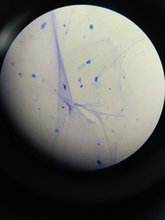
“Slug mucus, microscope image by Margherita Pevere”, image from https://www.margheritapevere.com/artwork/wombs/#jp-carousel-2731
(708)
2018
Polyethylene_terephthalate (PET)
Justyna Górowska
Pouring water into me, not only do I quench a thirst of the body, but also a thirst created by corp.-technologies of transmission, the satisfaction of which has become just as essential. I am swallowing an “incorporated sip”. The new regime of water control is a regime of desire and subjectivity. My body, consuming micro-plastics, becomes a post-productive body. The product has been extended, turning in the post-product, production has transformed into after-effect. It also becomes re-production, via the repeated process of ingesting the corporate water with millions of other people world-wide. A million of reproduced, plastic-water-filled bottles are being purchased every minute. I am, therefore, not only a post-product, I am a re-product in its repetition. I am one of many copied bodies, repeated, multiplied (repeat, copy, multiply). An endless edition of a microplastics spammed organism.
2018, Justyna Górowska, https://justynagorowska.com/Polyethylene_terephthalate; submitted by Justyna Górowska
https://issuu.com/justynagorowska2/docs/polyethylene_terephthalate_
Pouring water into me, not only do I quench a thirst of the body, but also a thirst created by corp.-technologies of transmission, the satisfaction of which has become just as essential. I am swallowing an “incorporated sip”. The new regime of water control is a regime of desire and subjectivity. My body, consuming micro-plastics, becomes a post-productive body. The product has been extended, turning in the post-product, production has transformed into after-effect. It also becomes re-production, via the repeated process of ingesting the corporate water with millions of other people world-wide. A million of reproduced, plastic-water-filled bottles are being purchased every minute. I am, therefore, not only a post-product, I am a re-product in its repetition. I am one of many copied bodies, repeated, multiplied (repeat, copy, multiply). An endless edition of a microplastics spammed organism.
2018, Justyna Górowska, https://justynagorowska.com/Polyethylene_terephthalate; submitted by Justyna Górowska
https://issuu.com/justynagorowska2/docs/polyethylene_terephthalate_
(709)
2018
Female Extension de Cornelia Sollfrank. Una Obra Pionera en el Ciberfeminismo [Female Extension by Cornelia Sollfrank. A Pioneering Work in Cyberfeminism]
Noelia Maeso Gómez
Los fundamentos teóricos de la obra Female Extension de Cornelia Sollfrank, se sitúan en el Ciberfeminismo, un movimiento en continua construcción, redefinición y reivindicación de nuevas configuraciones identitarias. La obra plantea la cuestión de qué tipo de identidadesse crean en la Red y si estas identidades hacen que sea posible una acción política efectiva.
Es una obra referente del Net Art, de carácter ciberfeminista que se desarrolló en el año 1997, al comienzo del movimiento. La pieza consistía en crear de manera ficticia más de doscientas artistas internacionales como participantes del primer concurso de NetArt. El objetivo era aumentar al número de concursantes mujeres y así elevar la posibilidad de que alguna de ellas ganase uno de los tres premios del concurso. Finalmente, aunque la mayoría de participantes eran artistas mujeres, los premios fueron otorgados a tres artistas hombres.
The theoretical foundations of the work Female Extension (x) by Cornelia Sollfrank, are located in Cyberfeminism, a movement in continuous construction, redefinition and vindication of new identity configurations. The work raises the question of what types of identities are created on the Internet and if these identities make possible an effective political action.
It is a reference work of Net Art, of a cyberfeminist character that was developed in the year 1997, at the beginning of the movement. The piece consisted of fictionally creating more than two hundred international artists as participants in the first Net Art contest. The objective was to increase the number of female contestants and thus raise the possibility that one of them could win one of the three prizes of the contest. Although the majority of participants were female artists, the prizes were awarded to three male artists.
2018, Noelia Maeso Gómez, ASRI—Arte y Sociedad. Revista de Investigación 15 (2018): pp. 217–226; excerpt p. 219; submitted by Noelia Maeso
Los fundamentos teóricos de la obra Female Extension de Cornelia Sollfrank, se sitúan en el Ciberfeminismo, un movimiento en continua construcción, redefinición y reivindicación de nuevas configuraciones identitarias. La obra plantea la cuestión de qué tipo de identidadesse crean en la Red y si estas identidades hacen que sea posible una acción política efectiva.
Es una obra referente del Net Art, de carácter ciberfeminista que se desarrolló en el año 1997, al comienzo del movimiento. La pieza consistía en crear de manera ficticia más de doscientas artistas internacionales como participantes del primer concurso de NetArt. El objetivo era aumentar al número de concursantes mujeres y así elevar la posibilidad de que alguna de ellas ganase uno de los tres premios del concurso. Finalmente, aunque la mayoría de participantes eran artistas mujeres, los premios fueron otorgados a tres artistas hombres.
The theoretical foundations of the work Female Extension (x) by Cornelia Sollfrank, are located in Cyberfeminism, a movement in continuous construction, redefinition and vindication of new identity configurations. The work raises the question of what types of identities are created on the Internet and if these identities make possible an effective political action.
It is a reference work of Net Art, of a cyberfeminist character that was developed in the year 1997, at the beginning of the movement. The piece consisted of fictionally creating more than two hundred international artists as participants in the first Net Art contest. The objective was to increase the number of female contestants and thus raise the possibility that one of them could win one of the three prizes of the contest. Although the majority of participants were female artists, the prizes were awarded to three male artists.
2018, Noelia Maeso Gómez, ASRI—Arte y Sociedad. Revista de Investigación 15 (2018): pp. 217–226; excerpt p. 219; submitted by Noelia Maeso
(710)
2018
Alembic
Sarah Jury, Helen Kaplinsky, Lucy A. Sames
Alembic considers legacies of cyberfeminism through intimate human and non-human entanglements. Processes of hacking, healing and viral encoding reveal an alchemical transmutation of data that constitutes an abstraction—we are mutants of our own destinies. […] Alembic takes a contemporary planetary and alchemical perspective on feminist praxis from the late 1960s to the present. […] In the early years of network connectivity, its potential for collective action and ability to circumvent traditional hierarchies aimed to create a new space for women artists, those outside the major-art markets, or geographically isolated in the midst of political hostilities, to experiment with hybrid media practices.
2018, Sarah Jury, Helen Kaplinksy, and Lucy A. Sames, eds. (London: Res., 2018); excerpts from Ele Carpenter, preface to Jury et al., Alembic, pp. 7–8; and from back cover
Contributors include Ele Carpenter, Sarah Jury, Helen Kaplinsky, Lucy A. Sames, Linda Stupart, Elizabeth Mputu, Faith Wilding, Giulia Smith, Ayesha Tan Jones, Maggie Roberts, Uma Breakdown, Kirsten Cooke, Shu Lea Cheang, Annabelle Craven-Jones, Megan Snowe, Stephanie Moran, Victoria Sin, Rosalie Doubal, Helen Hester, Legacy Russell, and Tamar Clarke-Brown.
Alembic considers legacies of cyberfeminism through intimate human and non-human entanglements. Processes of hacking, healing and viral encoding reveal an alchemical transmutation of data that constitutes an abstraction—we are mutants of our own destinies. […] Alembic takes a contemporary planetary and alchemical perspective on feminist praxis from the late 1960s to the present. […] In the early years of network connectivity, its potential for collective action and ability to circumvent traditional hierarchies aimed to create a new space for women artists, those outside the major-art markets, or geographically isolated in the midst of political hostilities, to experiment with hybrid media practices.
2018, Sarah Jury, Helen Kaplinksy, and Lucy A. Sames, eds. (London: Res., 2018); excerpts from Ele Carpenter, preface to Jury et al., Alembic, pp. 7–8; and from back cover
Contributors include Ele Carpenter, Sarah Jury, Helen Kaplinsky, Lucy A. Sames, Linda Stupart, Elizabeth Mputu, Faith Wilding, Giulia Smith, Ayesha Tan Jones, Maggie Roberts, Uma Breakdown, Kirsten Cooke, Shu Lea Cheang, Annabelle Craven-Jones, Megan Snowe, Stephanie Moran, Victoria Sin, Rosalie Doubal, Helen Hester, Legacy Russell, and Tamar Clarke-Brown.
(711)
2018
Betraying Big Brother: The Feminist Awakening in China
Leta Hong Fincher
On the eve of International Women’s Day in 2015, the Chinese government arrested five feminist activists and jailed them for thirty-seven days. The Feminist Five became a global cause célèbre, with Hillary Clinton speaking out on their behalf and activists inundating social media with #FreetheFive messages. But the Five are only symbols of a much larger feminist movement of civil rights lawyers, labor activists, performance artists, and online warriors prompting an unprecedented awakening among China’s educated, urban women. In Betraying Big Brother, journalist and scholar Leta Hong Fincher argues that the popular, broad-based movement poses the greatest challenge to China’s authoritarian regime today.
2018, Leta Hong Fincher (Brooklyn: Verso, 2018); excerpt from Verso; referred by Fei Liu
On the eve of International Women’s Day in 2015, the Chinese government arrested five feminist activists and jailed them for thirty-seven days. The Feminist Five became a global cause célèbre, with Hillary Clinton speaking out on their behalf and activists inundating social media with #FreetheFive messages. But the Five are only symbols of a much larger feminist movement of civil rights lawyers, labor activists, performance artists, and online warriors prompting an unprecedented awakening among China’s educated, urban women. In Betraying Big Brother, journalist and scholar Leta Hong Fincher argues that the popular, broad-based movement poses the greatest challenge to China’s authoritarian regime today.
2018, Leta Hong Fincher (Brooklyn: Verso, 2018); excerpt from Verso; referred by Fei Liu
(712)
2018
Manifesto
Melinda Rackham
Both exhilarating and shocking, [Sadie] Plant described the Manifesto as “the most stunning and dramatic” manifestation of cyberfeminism. (4) Much was written at the time, perhaps best exemplified by Jyanni Steffenson’s examination of the Manifesto’s mobilization of slime and metaphors of flow, penetration […] Today bytes such as the “clitoris is a direct line to the matrix” and “we make art with our cunts” are woven into the genesis of internet culture. So much so that the Manifesto “authored in a mode that spoke to the conditions of early network culture: collaborative, plagiaristic, possibly drug-fueled, and pornographic” opened Rhizome’s definitive survey Net Art Anthology. […]
Dialogues and exhibitions on the subject of cyberfeminism continued internationally, taking on a more critical and de-centered approach, acknowledging women’s real-world conditions across the globe. Cornelia Sollfrank’s paper on female hackers for the New Cyberfeminist International in 1999 reported “My clitoris does not have a direct line to the Matrix—unfortunately. Such rhetoric mystifies technology and misrepresents the daily life of the female computer worker.”
2018, Melinda Rackham, VNS Matrix, http://www.vnsmatrix.net/essays/manifesto
Both exhilarating and shocking, [Sadie] Plant described the Manifesto as “the most stunning and dramatic” manifestation of cyberfeminism. (4) Much was written at the time, perhaps best exemplified by Jyanni Steffenson’s examination of the Manifesto’s mobilization of slime and metaphors of flow, penetration […] Today bytes such as the “clitoris is a direct line to the matrix” and “we make art with our cunts” are woven into the genesis of internet culture. So much so that the Manifesto “authored in a mode that spoke to the conditions of early network culture: collaborative, plagiaristic, possibly drug-fueled, and pornographic” opened Rhizome’s definitive survey Net Art Anthology. […]
Dialogues and exhibitions on the subject of cyberfeminism continued internationally, taking on a more critical and de-centered approach, acknowledging women’s real-world conditions across the globe. Cornelia Sollfrank’s paper on female hackers for the New Cyberfeminist International in 1999 reported “My clitoris does not have a direct line to the Matrix—unfortunately. Such rhetoric mystifies technology and misrepresents the daily life of the female computer worker.”
2018, Melinda Rackham, VNS Matrix, http://www.vnsmatrix.net/essays/manifesto
(713)
2018
Staying with the Trouble through Design: Critical-feminist Design of Intimate Technology
Marie Louise Juul Søndergaard
The main contribution of the dissertation is the design methodology staying with the trouble through design, which is an anti-solutionist approach to design that interweaves the situated, personal and political role of design. By responding to/with trouble, rather than designing solutions to problems, staying with the trouble through design aims to better understand the conflicts and responsibilities involved in complex social, cultural and political issues, in order to imagine and design still possible futures. The design methodology interweaves three practices that unfold the self-reflective, ethnographic and collaborative process of staying with the trouble through design. The first practice, the willful practice of Staying with the Wrong, is a continuous process of becoming a feminist designer and it includes actively learning to be present; question the given as given, stay with the feelings you wish would go away, continuously practice self-reflection on own positionality and using feminist humour when designing with taboos. The second practice, Curious Visiting, encourages the designer to go beyond their own positionality, by listening to stories of pleasure and pain and visiting ongoing pasts and alternatives nows. This challenges the designer’s notion of the present by interweaving fact and fiction, and it highlights that this practice is never innocent but involves risks. Lastly, the third practice Collective Imagining highlights how design by proposing future change can respond to and/or with trouble and how we collectively can engage with futures to rewrite collective imaginings and tell other possible stories within and across social and cultural contexts. Together, these three interwoven practices propose a way of staying with the trouble through design, as a feminist contribution to current critical approaches within interaction design.
2018, Marie Louise Juul Søndergaard, dissertation, Aarhus University, doi: 10.7146/aul.289.203; submitted by Marie Louise Juul Søndergaard
https://ebooks.au.dk/aul/catalog/book/289
The main contribution of the dissertation is the design methodology staying with the trouble through design, which is an anti-solutionist approach to design that interweaves the situated, personal and political role of design. By responding to/with trouble, rather than designing solutions to problems, staying with the trouble through design aims to better understand the conflicts and responsibilities involved in complex social, cultural and political issues, in order to imagine and design still possible futures. The design methodology interweaves three practices that unfold the self-reflective, ethnographic and collaborative process of staying with the trouble through design. The first practice, the willful practice of Staying with the Wrong, is a continuous process of becoming a feminist designer and it includes actively learning to be present; question the given as given, stay with the feelings you wish would go away, continuously practice self-reflection on own positionality and using feminist humour when designing with taboos. The second practice, Curious Visiting, encourages the designer to go beyond their own positionality, by listening to stories of pleasure and pain and visiting ongoing pasts and alternatives nows. This challenges the designer’s notion of the present by interweaving fact and fiction, and it highlights that this practice is never innocent but involves risks. Lastly, the third practice Collective Imagining highlights how design by proposing future change can respond to and/or with trouble and how we collectively can engage with futures to rewrite collective imaginings and tell other possible stories within and across social and cultural contexts. Together, these three interwoven practices propose a way of staying with the trouble through design, as a feminist contribution to current critical approaches within interaction design.
2018, Marie Louise Juul Søndergaard, dissertation, Aarhus University, doi: 10.7146/aul.289.203; submitted by Marie Louise Juul Søndergaard
https://ebooks.au.dk/aul/catalog/book/289
(714)
2018
Neo Ultra Punk
Shu Lea Cheang, Res. (Sarah Jury, Helen Kaplinsky, Lucy A Sames)
Over the past three decades, artist and filmmaker Shu Lea Cheang’s films, performances and networked productions engaged the immanence and augmented futurity of the nonbinary techno-body. Programmed in partnership with Res., this three-day event presents new and recent work by Cheang alongside presentations by performers, filmmakers and thinkers reflecting upon Cheang’s proposition of ‘NEO ULTRA PUNK’ – described by the artist as the attitude of ‘a nouveau queer generation.’ This includes refugees, migrants, functional diversity, transfeminism, open families, subversive motherhoods, forms of sustainable living and the rise of self-defence practices for self-empowerment. The incorporation and wilful hacking of the body in the context of late-stage biotechnical capitalism led prominent queer theorist Paul B. Preciado to claim ‘we are facing a new kind of capitalism that is hot, psychotropic and punk.’ The artists featured in this programme offer practical, metaphysical and speculative renegotiations of the boundaries of the body in order to challenge the social and structural injustices reproduced through patriarchal gender norms. Participants include Zach Blas, Jürgen Brüning, Giulia Casalini, Shu Lea Cheang, Mijke van der Drift, Natasha Lall, Elizabeth Mputu, Ayesha Tan Jones, Hannah Quinlan and Rosie Hastings and Shadow Sistxrs Fight Club.
submitted by Helen Kaplinsky
https://archive.ica.art/whats-on/season/neo-ultra-punk/
Over the past three decades, artist and filmmaker Shu Lea Cheang’s films, performances and networked productions engaged the immanence and augmented futurity of the nonbinary techno-body. Programmed in partnership with Res., this three-day event presents new and recent work by Cheang alongside presentations by performers, filmmakers and thinkers reflecting upon Cheang’s proposition of ‘NEO ULTRA PUNK’ – described by the artist as the attitude of ‘a nouveau queer generation.’ This includes refugees, migrants, functional diversity, transfeminism, open families, subversive motherhoods, forms of sustainable living and the rise of self-defence practices for self-empowerment. The incorporation and wilful hacking of the body in the context of late-stage biotechnical capitalism led prominent queer theorist Paul B. Preciado to claim ‘we are facing a new kind of capitalism that is hot, psychotropic and punk.’ The artists featured in this programme offer practical, metaphysical and speculative renegotiations of the boundaries of the body in order to challenge the social and structural injustices reproduced through patriarchal gender norms. Participants include Zach Blas, Jürgen Brüning, Giulia Casalini, Shu Lea Cheang, Mijke van der Drift, Natasha Lall, Elizabeth Mputu, Ayesha Tan Jones, Hannah Quinlan and Rosie Hastings and Shadow Sistxrs Fight Club.
submitted by Helen Kaplinsky
https://archive.ica.art/whats-on/season/neo-ultra-punk/
(715)
2018
Break.up
Joanna Walsh
In this “novel in essays,” Joanna Walsh simultaneously flees and pursues an ambiguous partner in an affair conducted mostly online. Traversing Europe, she awaits emails and texts and PMs, awash in her dreams, offering succinct meditations on connection and communication. If Marguerite Duras situated the telephone as the twentieth century's preferred hopeless form of connection, Walsh pinpoints the nodal points of a “romance” within today's mesh of electronic communication.
2018, Joanna Walsh, Semiotexte; submitted by Joanna Walsh
https://mitpress.mit.edu/9781635900149/
In this “novel in essays,” Joanna Walsh simultaneously flees and pursues an ambiguous partner in an affair conducted mostly online. Traversing Europe, she awaits emails and texts and PMs, awash in her dreams, offering succinct meditations on connection and communication. If Marguerite Duras situated the telephone as the twentieth century's preferred hopeless form of connection, Walsh pinpoints the nodal points of a “romance” within today's mesh of electronic communication.
2018, Joanna Walsh, Semiotexte; submitted by Joanna Walsh
https://mitpress.mit.edu/9781635900149/
(716)
2018
WetMeWild
Justyna Górowska
WetMeWild is the fantasy of being a Slavic water nymph, a mythical green haired creature with special seductive powers, living in a river and small forest streams. Her creation, appearance, used artifacts, and performed gestures are a game of associations that refer to existed mythology. WetMeWild appears within the humidity of the High, Chamber, Canal and Spring New York City Subway stations (which are former underground water streams), through small ephemeral interventions, a choreography of walking through platforms and situational distortion in subway train. She smears the smell of Polish forest in the form of a transparent lubricant that becomes subtle traces of her presence. [...]
All her activities are involved in the protection and worshipping of water during environmental degradation, as well as in the concept of responsible communication in a time of developed technology, online presence and domination of corporate system.
2018, Justyna Górowska, https://justynagorowska.com/WetMeWild, summary excerpt from artist’s page; submitted by Justyna Górowska
https://vimeo.com/365595093?embedded=true&source=vimeo_logo&owner=1163220

WetMeWild, screenshot 00:16 from https://vimeo.com/365595093?embedded=true&source=vimeo_logo&owner=1163220
WetMeWild is the fantasy of being a Slavic water nymph, a mythical green haired creature with special seductive powers, living in a river and small forest streams. Her creation, appearance, used artifacts, and performed gestures are a game of associations that refer to existed mythology. WetMeWild appears within the humidity of the High, Chamber, Canal and Spring New York City Subway stations (which are former underground water streams), through small ephemeral interventions, a choreography of walking through platforms and situational distortion in subway train. She smears the smell of Polish forest in the form of a transparent lubricant that becomes subtle traces of her presence. [...]
All her activities are involved in the protection and worshipping of water during environmental degradation, as well as in the concept of responsible communication in a time of developed technology, online presence and domination of corporate system.
2018, Justyna Górowska, https://justynagorowska.com/WetMeWild, summary excerpt from artist’s page; submitted by Justyna Górowska
https://vimeo.com/365595093?embedded=true&source=vimeo_logo&owner=1163220

WetMeWild, screenshot 00:16 from https://vimeo.com/365595093?embedded=true&source=vimeo_logo&owner=1163220
(717)
2018
Flâneuse>La caminanta
Amanda Gutierrez
Flâneuse>La caminanta is a video documentary edited as a VR (virtual reality), using a 360-degree camera to document soundwalks of female participants in the public space. The title emphasizes a missing word in the French and Spanish language of women as wanderers. This lost world also represents the lack of inclusiveness in which the female-identifying bodies can safely perceive their autonomy as walkers. The VR environment exposes the perspective of participants navigating urban landscapes in Mexico City, Abu Dhabi, NYC, and Brooklyn through short conversations while we walk in their space. The locations selected by participants and have personal meaning in their everyday journeys on the relationship of inclusiveness, safeness, vulnerability, and empowerment.
2018, Amanda Gutierrez, https://vrwalkers.org; submitted by Amanda Gutierrez
Flâneuse>La caminanta is a video documentary edited as a VR (virtual reality), using a 360-degree camera to document soundwalks of female participants in the public space. The title emphasizes a missing word in the French and Spanish language of women as wanderers. This lost world also represents the lack of inclusiveness in which the female-identifying bodies can safely perceive their autonomy as walkers. The VR environment exposes the perspective of participants navigating urban landscapes in Mexico City, Abu Dhabi, NYC, and Brooklyn through short conversations while we walk in their space. The locations selected by participants and have personal meaning in their everyday journeys on the relationship of inclusiveness, safeness, vulnerability, and empowerment.
2018, Amanda Gutierrez, https://vrwalkers.org; submitted by Amanda Gutierrez
(718)
2018
Common Cyborg
Jillian Weise
I’m nervous at night when I take off my leg. I wait until the last moment before sleep to un-tech because I am a woman who lives alone and has been stalked, so I don’t feel safe in my home on crutches. How would I run? How would I fight back? Instead of taking Klonopin, I read the Economist. The tone is detached. There is war, but always elsewhere.
When I tell people I am a cyborg, they often ask if I have read Donna Haraway’s ‘A Cyborg Manifesto’. (x) Of course I have read it. And I disagree with it. The manifesto, published in 1985, promised a cyberfeminist resistance. The resistance would be networked and coded by women and for women to change the course of history and derange sexism beyond recognition. Technology would un-gender us. Instead, it has been so effective at erasing disabled women1 that even now, in conversation with many feminists, I am no longer surprised that disability does not figure into their notions of bodies and embodiment. Haraway’s manifesto lays claim to cyborgs (‘we are all cyborgs’) and defines the cyborg unilaterally through metaphor. To Haraway, the cyborg is a matter of fiction, a struggle over life and death, a modern war orgy, a map, a condensed image, a creature without gender. The manifesto coopts cyborg identity while eliminating reference to disabled people on which the notion of the cyborg is premised. Disabled people who use tech to live are cyborgs. Our lives are not metaphors.
2018, Jillian Weise, https://granta.com/common-cyborg/; submitted by Kim Kleinert
I’m nervous at night when I take off my leg. I wait until the last moment before sleep to un-tech because I am a woman who lives alone and has been stalked, so I don’t feel safe in my home on crutches. How would I run? How would I fight back? Instead of taking Klonopin, I read the Economist. The tone is detached. There is war, but always elsewhere.
When I tell people I am a cyborg, they often ask if I have read Donna Haraway’s ‘A Cyborg Manifesto’. (x) Of course I have read it. And I disagree with it. The manifesto, published in 1985, promised a cyberfeminist resistance. The resistance would be networked and coded by women and for women to change the course of history and derange sexism beyond recognition. Technology would un-gender us. Instead, it has been so effective at erasing disabled women1 that even now, in conversation with many feminists, I am no longer surprised that disability does not figure into their notions of bodies and embodiment. Haraway’s manifesto lays claim to cyborgs (‘we are all cyborgs’) and defines the cyborg unilaterally through metaphor. To Haraway, the cyborg is a matter of fiction, a struggle over life and death, a modern war orgy, a map, a condensed image, a creature without gender. The manifesto coopts cyborg identity while eliminating reference to disabled people on which the notion of the cyborg is premised. Disabled people who use tech to live are cyborgs. Our lives are not metaphors.
2018, Jillian Weise, https://granta.com/common-cyborg/; submitted by Kim Kleinert
(719)
2019
Gendered Project
Omayeli Arenyeka
The Gendered Project is a growing library of gendered words in the English dictionary.
Early in 2017, during a discussion with my friends, I used the word fuckboy to describe a man I had dealt with. I wondered out loud why it took so long for a word that so aptly describes a common type of man to be used in popular culture. I thought of the myriad words that exist to derogatorily describe or shame sexually liberated women (as a social category) and the dearth of such equivalent words for men (as a social category). I decided to try and create something that would allow us to explore what the English language tells us about men, women and those who do not fit in those binaries.
The words we have (and don’t) matter. They reflect the biases we embrace and the ideas we value. The word imbalance for negatively describing men’s sexuality versus women’s reflects our culture of gender double standards and slut-shaming. We risk reinforcing and perpetuating these biases and negative values if we don’t interrogate the words we use and why. I think exploring language in terms of how genders are represented and interrogating how and why words are used is important for understanding and challenging sexism and patriarchy.
2019, Omayeli Arenyeka, https://genderedproject.org/, excerpt from https://genderedproject.org/about; submitted by Omayeli Arenyeka
The Gendered Project is a growing library of gendered words in the English dictionary.
Early in 2017, during a discussion with my friends, I used the word fuckboy to describe a man I had dealt with. I wondered out loud why it took so long for a word that so aptly describes a common type of man to be used in popular culture. I thought of the myriad words that exist to derogatorily describe or shame sexually liberated women (as a social category) and the dearth of such equivalent words for men (as a social category). I decided to try and create something that would allow us to explore what the English language tells us about men, women and those who do not fit in those binaries.
The words we have (and don’t) matter. They reflect the biases we embrace and the ideas we value. The word imbalance for negatively describing men’s sexuality versus women’s reflects our culture of gender double standards and slut-shaming. We risk reinforcing and perpetuating these biases and negative values if we don’t interrogate the words we use and why. I think exploring language in terms of how genders are represented and interrogating how and why words are used is important for understanding and challenging sexism and patriarchy.
2019, Omayeli Arenyeka, https://genderedproject.org/, excerpt from https://genderedproject.org/about; submitted by Omayeli Arenyeka
(720)
2019
WYFY: Exorcizing Technology Manifesto
BUFU
With You, For You,
we will:
Snatch our tongues back
Back from the academy (530)
Back from thieves in ivory towers
Back from detention
Back from the hands that took
our love notes
and bound them
into texts we could never afford
Back from their “validation”
Back from their “credentials”
Back from institutions
that hoarded them from us
and commodified
our precious histories
As we
Deepen our connections to
Family and Earth
Change and History
Magic and Love
Technologies and Bodies
Knowledge and the Erotic
2019, BUFU, (x) https://www.bufubyusforus.com/wyfy-school-manifesto-info
https://docs.google.com/document/d/1TMuCytOWLwIFkJtzQLmnStxE4UGuAjXVOYuZGmh8J9U/edit
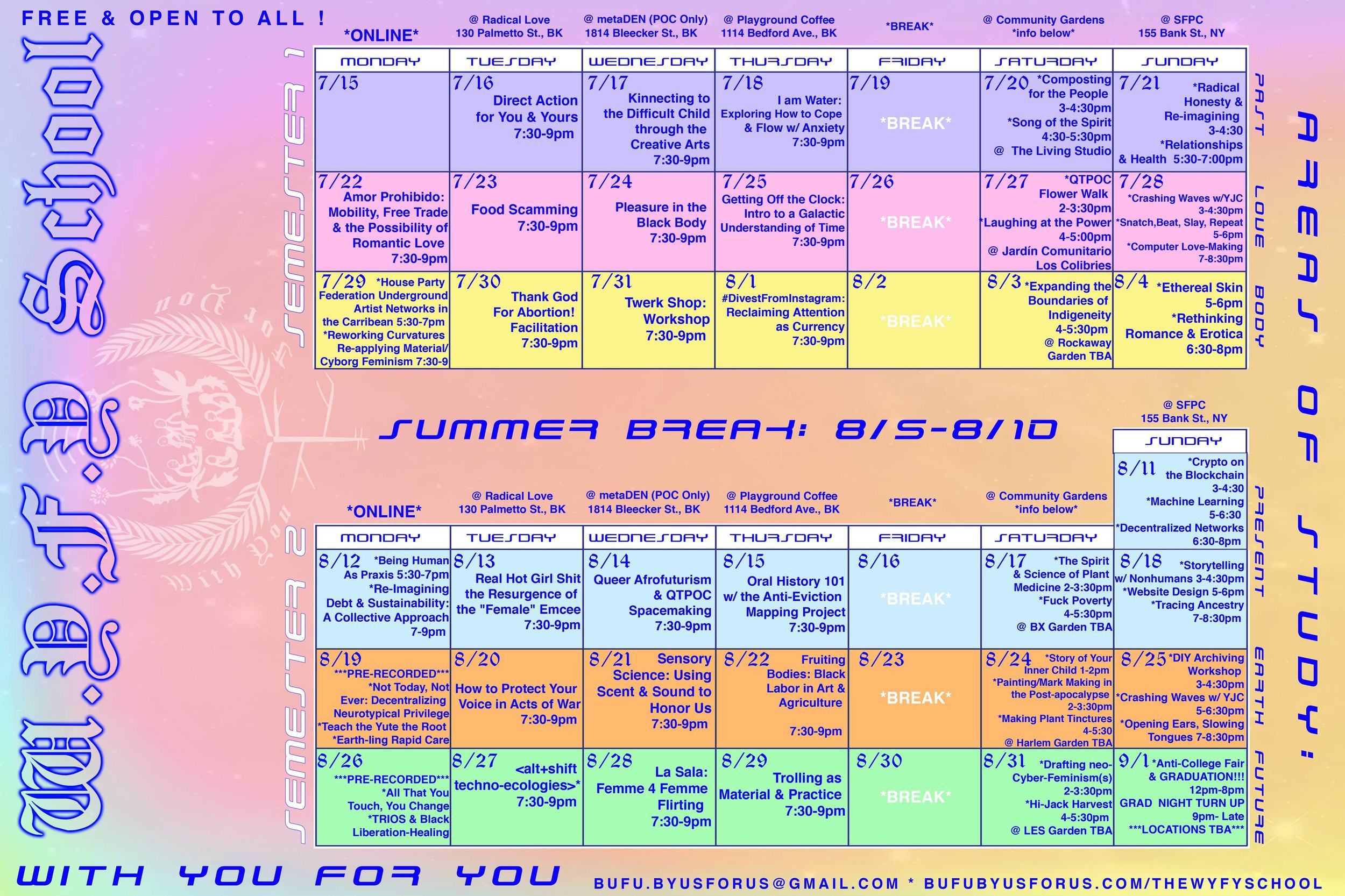
Image from https://www.bufubyusforus.com/thewyfyschool
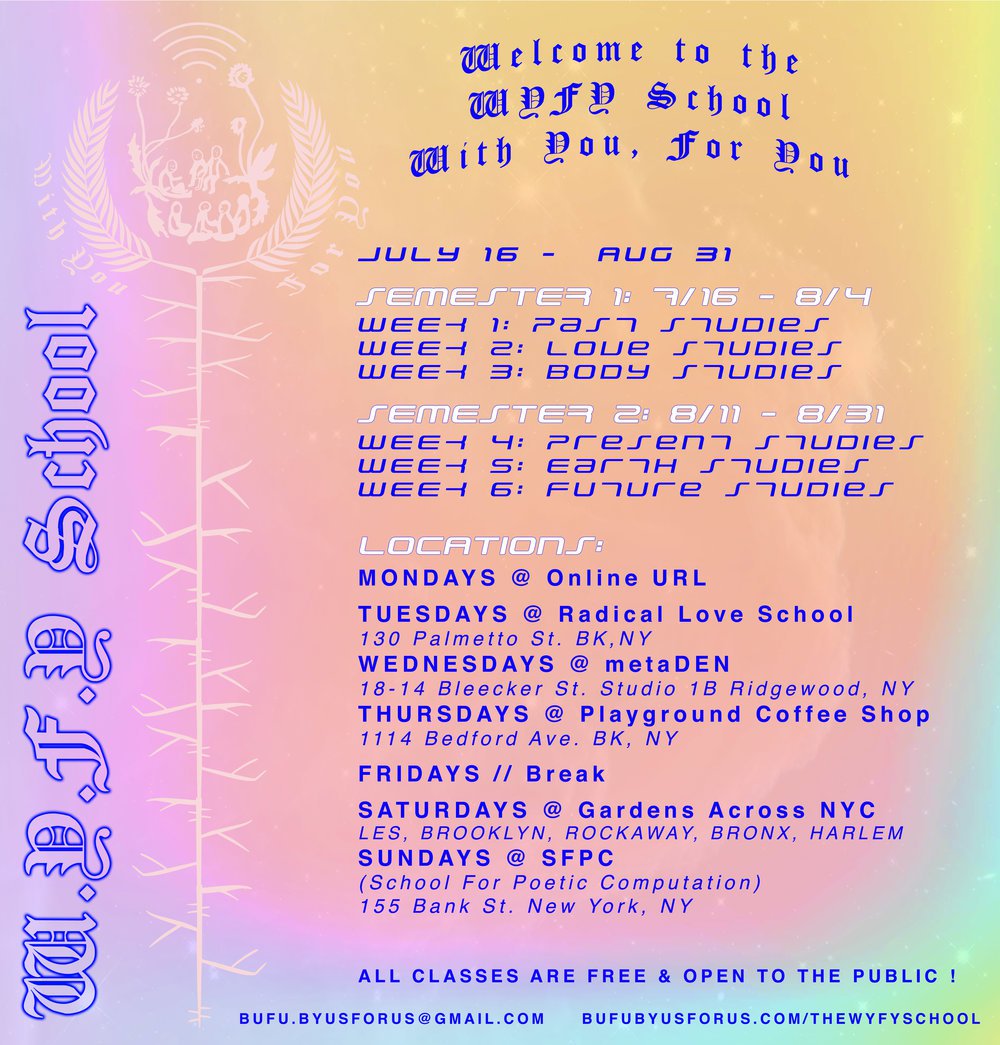
Image from https://www.bufubyusforus.com/thewyfyschool
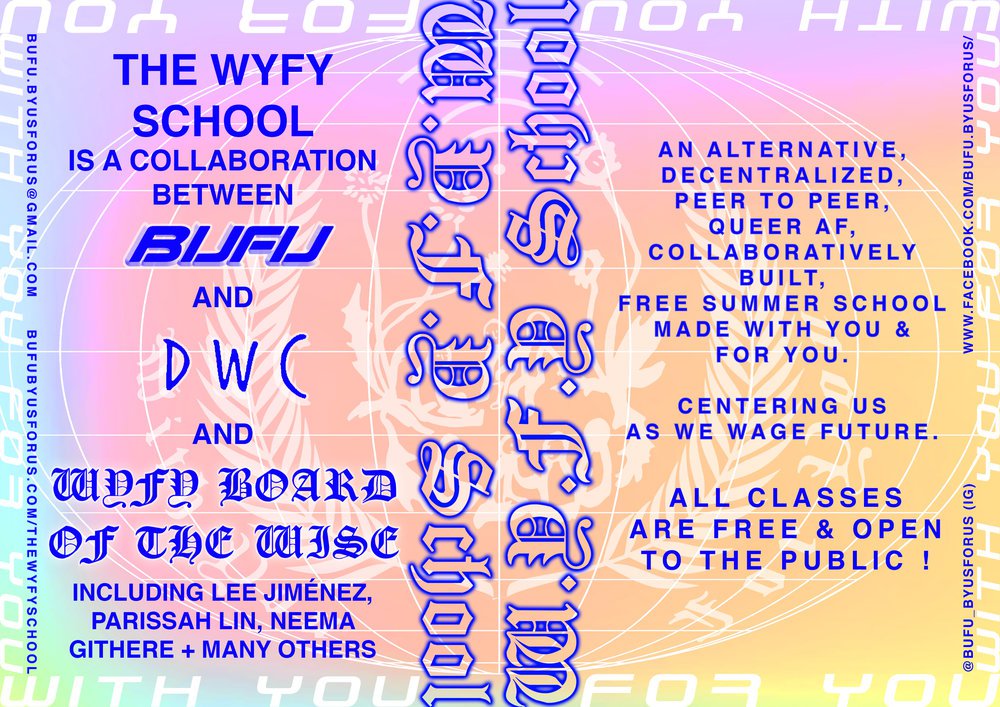
Image from https://www.bufubyusforus.com/thewyfyschool
With You, For You,
we will:
Snatch our tongues back
Back from the academy (530)
Back from thieves in ivory towers
Back from detention
Back from the hands that took
our love notes
and bound them
into texts we could never afford
Back from their “validation”
Back from their “credentials”
Back from institutions
that hoarded them from us
and commodified
our precious histories
As we
Deepen our connections to
Family and Earth
Change and History
Magic and Love
Technologies and Bodies
Knowledge and the Erotic
2019, BUFU, (x) https://www.bufubyusforus.com/wyfy-school-manifesto-info
https://docs.google.com/document/d/1TMuCytOWLwIFkJtzQLmnStxE4UGuAjXVOYuZGmh8J9U/edit

Image from https://www.bufubyusforus.com/thewyfyschool

Image from https://www.bufubyusforus.com/thewyfyschool
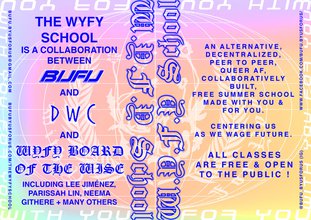
Image from https://www.bufubyusforus.com/thewyfyschool
(721)
2019
Racial Justice in the Distributed Web
Taeyoon Choi
The Distributed Web of Care seeks to shift the center of tech culture from corporations to a diverse community of technologists, artists, engineers, and scholars, holding identities across races, genders, privilege, and abilities. If the “new internet” is developed by people of color, women, queer folk, and disabled people, we can imagine new protocols and networks, untethered by the constraints which have led to these voices to remain excluded. (593) To bring equality to access and equity to ownership of technology, we need to create new narratives of the internet, tools for learning and empowerment, and systems of interdependence among communities.
2019, Taeyoon Choi, http://distributedweb.care/posts/racial-justice/
The Distributed Web of Care seeks to shift the center of tech culture from corporations to a diverse community of technologists, artists, engineers, and scholars, holding identities across races, genders, privilege, and abilities. If the “new internet” is developed by people of color, women, queer folk, and disabled people, we can imagine new protocols and networks, untethered by the constraints which have led to these voices to remain excluded. (593) To bring equality to access and equity to ownership of technology, we need to create new narratives of the internet, tools for learning and empowerment, and systems of interdependence among communities.
2019, Taeyoon Choi, http://distributedweb.care/posts/racial-justice/
(722)
2019
How to Make a Feminist Alexa
Feminist Internet
Exploring the question of “WTF is a feminist conversation?” through creative practice, with a group of extraordinary young artists and designers was, in itself, like having a fascinating, challenging but ultimately rewarding conversation. Over two 3-day periods, we talked to imaginary users, Alexa, researchers, educators and each other. We brought our diverse perspectives about feminism(s) to bear on the design of technologies that could engage their users in conversations that might improve wellbeing, reduce loneliness, boost body-image, deliver nuanced sex education, or develop self-knowledge. (604) We realised that there may not be a feminist response to the question “Hey Alexa, what’s the weather”. What this reveals is not that feminism is “lost for words”, but that Alexa isn’t designed to elicit feminist conversations. In fact it is not designed to elicit conversations at all.”
2019, Feminist Internet (London: UAL Creative Computing Institute, 2019); excerpt p. 24; referred by Charlotte Webb
https://www.are.na/block/7884851 https://www.youtube.com/watch?v=t9HA1ZOBrZk&t=2s
London
Exploring the question of “WTF is a feminist conversation?” through creative practice, with a group of extraordinary young artists and designers was, in itself, like having a fascinating, challenging but ultimately rewarding conversation. Over two 3-day periods, we talked to imaginary users, Alexa, researchers, educators and each other. We brought our diverse perspectives about feminism(s) to bear on the design of technologies that could engage their users in conversations that might improve wellbeing, reduce loneliness, boost body-image, deliver nuanced sex education, or develop self-knowledge. (604) We realised that there may not be a feminist response to the question “Hey Alexa, what’s the weather”. What this reveals is not that feminism is “lost for words”, but that Alexa isn’t designed to elicit feminist conversations. In fact it is not designed to elicit conversations at all.”
2019, Feminist Internet (London: UAL Creative Computing Institute, 2019); excerpt p. 24; referred by Charlotte Webb
https://www.are.na/block/7884851 https://www.youtube.com/watch?v=t9HA1ZOBrZk&t=2s
London
(723)
2019
Why We Need to Design Feminist AI
Josie Young
How does a chatbot become sexist? According to Josie Young’s research, it’s usually incorporated into the chatbot’s design and amplified through day-to-day conversations with humans. From only responding to commands from male voices to tolerating abusive language, tech companies are incorporating regressive ideas and unconscious bias into AI. (572) Not only is this a sign of lazy design, says Josie, but attempting to replicate ourselves in AI is stifling innovation and the potential of this technology. An advocate for designing AI products and systems using ethical and feminist principles, Josie argues that we should be using this technology to heal society’s problems, instead of adding to them. With this in mind, she has created a practical tool for teams to use when building a bot, prompting developers to question their own bias and training them to address these issues themselves in the future.
2019, Josie Young, filmed December 2018 in London, TEDx, video, 10 min., 29 sec, https://www.youtube.com/watch?v=E-O3LaSEcVw&feature=emb_logo&ab_channel=TEDxTalk; referred by Charlotte Webb
How does a chatbot become sexist? According to Josie Young’s research, it’s usually incorporated into the chatbot’s design and amplified through day-to-day conversations with humans. From only responding to commands from male voices to tolerating abusive language, tech companies are incorporating regressive ideas and unconscious bias into AI. (572) Not only is this a sign of lazy design, says Josie, but attempting to replicate ourselves in AI is stifling innovation and the potential of this technology. An advocate for designing AI products and systems using ethical and feminist principles, Josie argues that we should be using this technology to heal society’s problems, instead of adding to them. With this in mind, she has created a practical tool for teams to use when building a bot, prompting developers to question their own bias and training them to address these issues themselves in the future.
2019, Josie Young, filmed December 2018 in London, TEDx, video, 10 min., 29 sec, https://www.youtube.com/watch?v=E-O3LaSEcVw&feature=emb_logo&ab_channel=TEDxTalk; referred by Charlotte Webb
(724)
2019
Skincare and Opsec Forever
Addie Wagenknecht
Step 1: Uncap under eye concealer.
Step 2: Discuss threat modeling.
Step 3: Dab on under eye concealer.
Step 4: Switch from passwords to passphrases.
Cosmetics tutorials and cybersecurity may seem like strange bedfellows. One deals in eyeshadow and moisturizer; the other in two-factor authentication and network vulnerabilities. But in the world of YouTube—where beauty vlogs are abundant and reliable cybersecurity (472) advice is scarce—they actually make a pretty good couple. Borrowing beauty vloggers’ DIY aesthetic and focusing on the real-world applications of infosec (e.g. thwarting nosey partners), I filmed tutorials that everyday users might find appealing.
2019, Addie Wagenknecht, Medium, January 29, 2019, https://medium.com/read-write-participate/skincare-and-opsec-forever-8d2f4f37b438
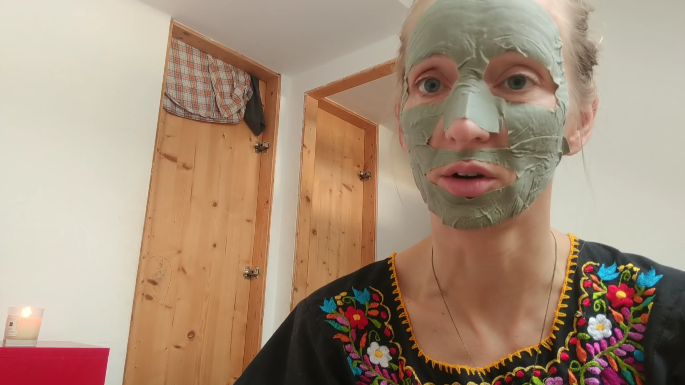
Addie Wagenknecht in Skincare and Opsec Forever
Step 1: Uncap under eye concealer.
Step 2: Discuss threat modeling.
Step 3: Dab on under eye concealer.
Step 4: Switch from passwords to passphrases.
Cosmetics tutorials and cybersecurity may seem like strange bedfellows. One deals in eyeshadow and moisturizer; the other in two-factor authentication and network vulnerabilities. But in the world of YouTube—where beauty vlogs are abundant and reliable cybersecurity (472) advice is scarce—they actually make a pretty good couple. Borrowing beauty vloggers’ DIY aesthetic and focusing on the real-world applications of infosec (e.g. thwarting nosey partners), I filmed tutorials that everyday users might find appealing.
2019, Addie Wagenknecht, Medium, January 29, 2019, https://medium.com/read-write-participate/skincare-and-opsec-forever-8d2f4f37b438
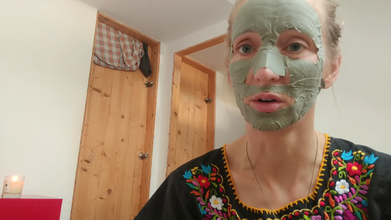
Addie Wagenknecht in Skincare and Opsec Forever
(725)
2019
Producing Futures—An Exhibition on Post-Cyber-Feminisms
Heike Munder
In the group show Producing Futures—An Exhibition on Post-Cyber-Feminisms, (556) the Migros Museum für Gegenwartskunst surveys the causes championed by feminists in the post-internet era. Our virtual and real lives are almost inextricably interwoven today. Yet contrary to the heady proclamations of the cyberfeminists of the 1990s, cyberspace has not evolved into a realm of unclouded liberation and self-empowerment; it has also served to reinforce existing hierarchies and power structures. Opening with a new work by the artists’ collective VNS Matrix, which coined the term cyberfeminism, the presentation revisits the movement’s historic aspirations and visions, contrasts them with the contemporary situation, and inquires into ways in which its ideas may still be productive. The exhibition undertakes a critical engagement with different feminist approaches that put the spotlight on the tension between body and technology and on discriminatory gender norms. […] Many of the works pursue a holistic view, drawing on (medical) science, the occult, and other fields to stimulate a more comprehensive discussion and generate ideas for a livable future of emancipation, gender justice, and social equality.
2019, Heike Munder (exhibition, Migros Museum für Gegenwartskunst, Zürich, Switzerland, Feburary 16–May 12, 2019); excerpt from “Producing Futures—An Exhibition on Post-Cyber-Feminisms,” Migros Museum für Gegenwartskunst, https://migrosmuseum.ch/en/exhibitions/producing-futures-an-exhibition-on-post-cyber-feminism
Artists include Cao Fei, Cécile B. Evans, Lynn Hershman Leeson, Juliana Huxtable, Guan Xiao, MALAXA, Mary Maggic, Shana Moulton, Tabita Rezaire, Gavin Rayna Russom, Frances Stark, Wu Tsang, Anna Uddenberg, VNS Matrix, and Anicka Yi.
Zurich

Photo: Stefan Altenburger Photography, Zurich

Photo: Stefan Altenburger Photography, Zurich
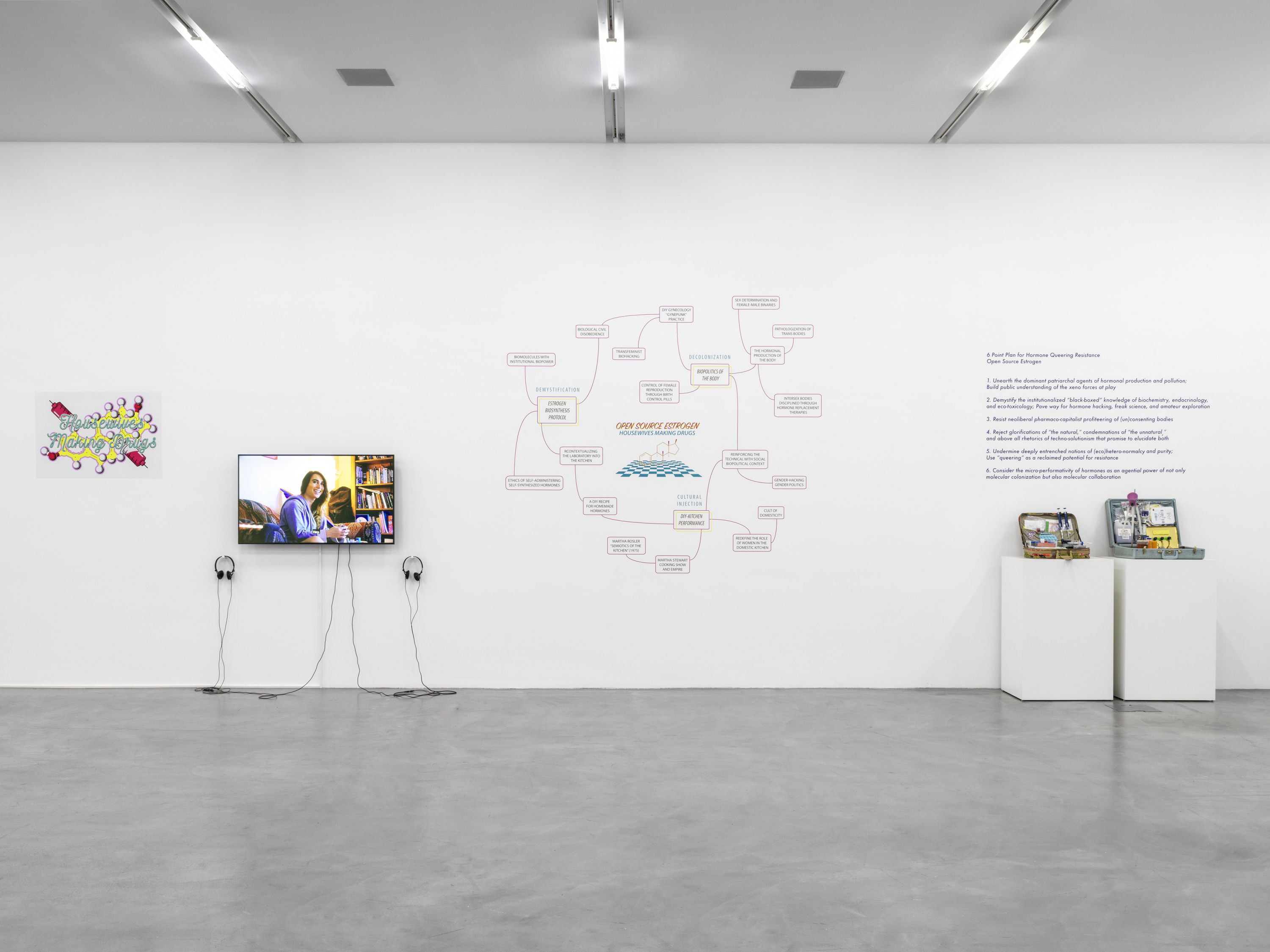
Photo: Stefan Altenburger Photography, Zurich
In the group show Producing Futures—An Exhibition on Post-Cyber-Feminisms, (556) the Migros Museum für Gegenwartskunst surveys the causes championed by feminists in the post-internet era. Our virtual and real lives are almost inextricably interwoven today. Yet contrary to the heady proclamations of the cyberfeminists of the 1990s, cyberspace has not evolved into a realm of unclouded liberation and self-empowerment; it has also served to reinforce existing hierarchies and power structures. Opening with a new work by the artists’ collective VNS Matrix, which coined the term cyberfeminism, the presentation revisits the movement’s historic aspirations and visions, contrasts them with the contemporary situation, and inquires into ways in which its ideas may still be productive. The exhibition undertakes a critical engagement with different feminist approaches that put the spotlight on the tension between body and technology and on discriminatory gender norms. […] Many of the works pursue a holistic view, drawing on (medical) science, the occult, and other fields to stimulate a more comprehensive discussion and generate ideas for a livable future of emancipation, gender justice, and social equality.
2019, Heike Munder (exhibition, Migros Museum für Gegenwartskunst, Zürich, Switzerland, Feburary 16–May 12, 2019); excerpt from “Producing Futures—An Exhibition on Post-Cyber-Feminisms,” Migros Museum für Gegenwartskunst, https://migrosmuseum.ch/en/exhibitions/producing-futures-an-exhibition-on-post-cyber-feminism
Artists include Cao Fei, Cécile B. Evans, Lynn Hershman Leeson, Juliana Huxtable, Guan Xiao, MALAXA, Mary Maggic, Shana Moulton, Tabita Rezaire, Gavin Rayna Russom, Frances Stark, Wu Tsang, Anna Uddenberg, VNS Matrix, and Anicka Yi.
Zurich

Photo: Stefan Altenburger Photography, Zurich

Photo: Stefan Altenburger Photography, Zurich

Photo: Stefan Altenburger Photography, Zurich
(726)
2019
Cyberwitches Manifesto
Lucile Olympe Haute
We are corporeal, biological, incarnate entities, but also and simultaneously: relational and informational beings.
We are entities with digital extensions.
We live in a physical, technical and digital world.
Let’s be hybrid entities living in an hybrid world.
Let’s take care of our bodies-hub-server. (x)
Our contemporary everyday technical equipment takes part to our ritual forms. (x)
Let’s perform technophile rituals.
Let’s make the gestures.
Let’s say the words.
Let’s manipulate the objects.
Let’s summon archetypal survivals.
Let’s call for the emergence of egregore.
Let’s seek for upsurge,
Let's seek for a fleeting energetic symbiosis.
Let’s practice this art of changing consciousness at will.
Let’s be cyberwitches.
2019, Lucile Olympe Haute, http://lucilehaute.fr/cyberwitches-manifesto/cyberwitches-manifesto-en.html
We are corporeal, biological, incarnate entities, but also and simultaneously: relational and informational beings.
We are entities with digital extensions.
We live in a physical, technical and digital world.
Let’s be hybrid entities living in an hybrid world.
Let’s take care of our bodies-hub-server. (x)
Our contemporary everyday technical equipment takes part to our ritual forms. (x)
Let’s perform technophile rituals.
Let’s make the gestures.
Let’s say the words.
Let’s manipulate the objects.
Let’s summon archetypal survivals.
Let’s call for the emergence of egregore.
Let’s seek for upsurge,
Let's seek for a fleeting energetic symbiosis.
Let’s practice this art of changing consciousness at will.
Let’s be cyberwitches.
2019, Lucile Olympe Haute, http://lucilehaute.fr/cyberwitches-manifesto/cyberwitches-manifesto-en.html
(727)
2019
Refiguring Binaries
Kelani Nichole
In recent years, the contours of a new contemporary art movement have begun to emerge, forged in reaction to the ideologies of Silicon Valley, the platforming and globalization of culture, and technologies of power like artificial intelligence, photorealistic computer-generated images, and virtual and augmented reality. These “Simulists” simultaneously embrace and subvert technology as their means of interrogation–expressing humanist, nonbinary, and decolonized futures. Curated by Kelani Nichole and featuring works by Morehshin Allahyari, (660) LaTurbo Avedon, Meriem Bennani, Snow Yunxue Fu, Claudia Hart, Faith Holland, (382) Lorna Mills, Eva Papamargariti, Tabita Rezaire, (450) and Lu Yang, the exhibition explores identity, the body, and the politics of technology. Virtual space is inhabited with queer bodies and cultural identity is reclaimed through subversive uses of technology. The boundaries of technology and the body are blurred, as are the lines between author, image, and copy. Possible futures emerge as the layers of simulation that mediate contemporary culture are revealed.
2019, Kelani Nichole, cur. (exhibition, Pioneer Works, Brooklyn, NY, February 22–April 21, 2019); excerpt from “Refiguring Binaries,” Pioneer Works, https://pioneerworks.org/exhibitions/refiguring-binaries/
Brooklyn, New York
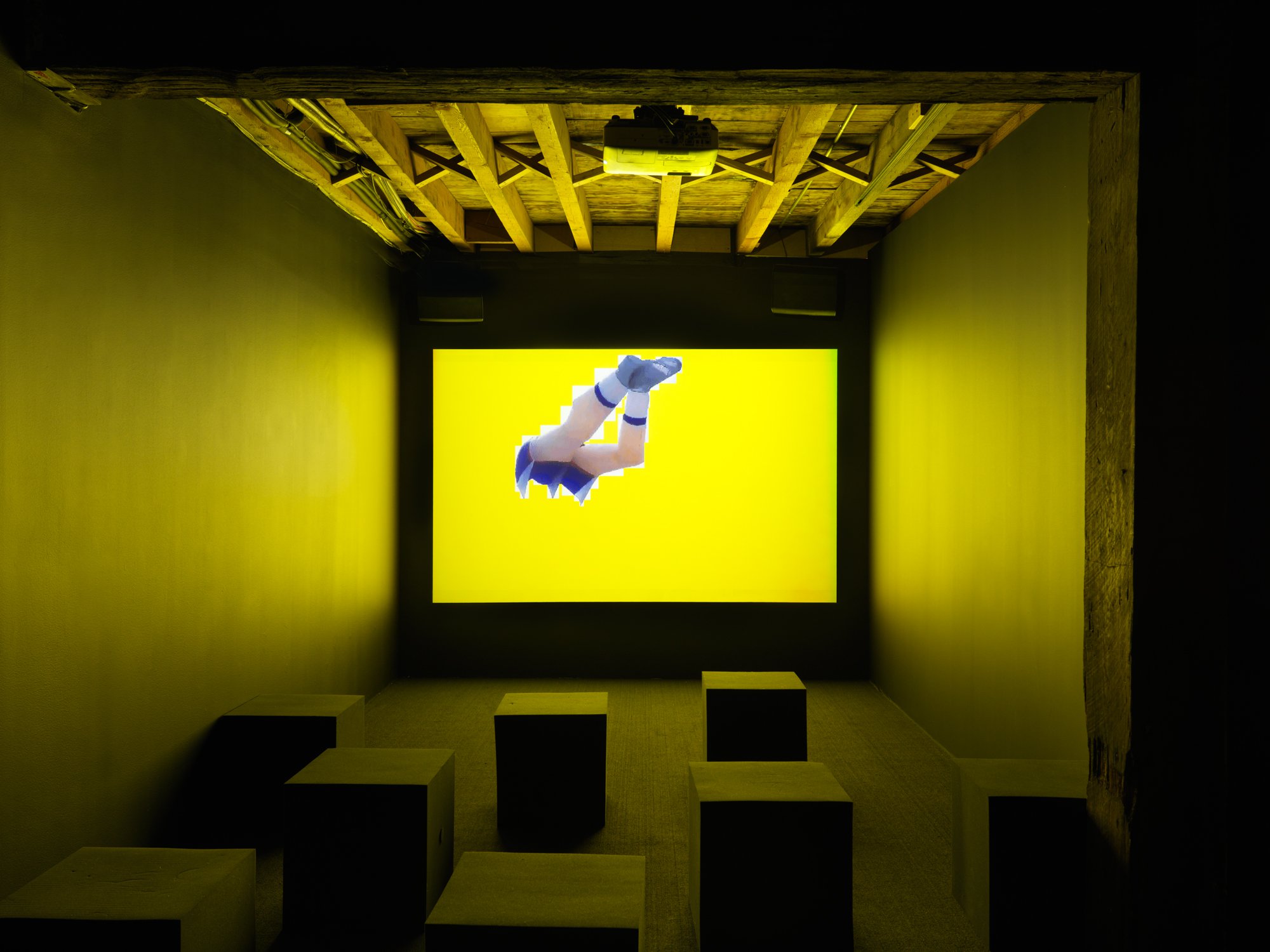
image from https://pioneerworks.org/exhibitions/refiguring-binaries/](http:/)
In recent years, the contours of a new contemporary art movement have begun to emerge, forged in reaction to the ideologies of Silicon Valley, the platforming and globalization of culture, and technologies of power like artificial intelligence, photorealistic computer-generated images, and virtual and augmented reality. These “Simulists” simultaneously embrace and subvert technology as their means of interrogation–expressing humanist, nonbinary, and decolonized futures. Curated by Kelani Nichole and featuring works by Morehshin Allahyari, (660) LaTurbo Avedon, Meriem Bennani, Snow Yunxue Fu, Claudia Hart, Faith Holland, (382) Lorna Mills, Eva Papamargariti, Tabita Rezaire, (450) and Lu Yang, the exhibition explores identity, the body, and the politics of technology. Virtual space is inhabited with queer bodies and cultural identity is reclaimed through subversive uses of technology. The boundaries of technology and the body are blurred, as are the lines between author, image, and copy. Possible futures emerge as the layers of simulation that mediate contemporary culture are revealed.
2019, Kelani Nichole, cur. (exhibition, Pioneer Works, Brooklyn, NY, February 22–April 21, 2019); excerpt from “Refiguring Binaries,” Pioneer Works, https://pioneerworks.org/exhibitions/refiguring-binaries/
Brooklyn, New York
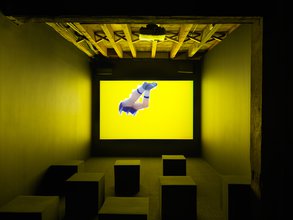
image from https://pioneerworks.org/exhibitions/refiguring-binaries/](http:/)
(728)
2019
Artificial Unintelligence: How Computers Misunderstand the World
Meredith Broussard
A guide to understanding the inner workings and outer limits of technology and why we should never assume that computers always get it right. […] Making a case against technochauvinism―the belief that technology is always the solution―[Meredith] Broussard argues that it’s just not true that social problems would inevitably retreat before a digitally enabled Utopia. To prove her point, she undertakes a series of adventures in computer programming. She goes for an alarming ride in a driverless car, concluding “the cyborg future is not coming any time soon”; uses artificial intelligence (388) to investigate why students can’t pass standardized tests; deploys machine learning to predict which passengers survived the Titanic disaster; and attempts to repair the US campaign finance system by building AI software. If we understand the limits of what we can do with technology, Broussard tells us, we can make better choices about what we should do with it to make the world better for everyone.
2019, Meredith Broussard (Cambridge, MA: MIT Press, 2019); excerpt from MIT Press
https://mitpress.mit.edu/books/artificial-unintelligence
A guide to understanding the inner workings and outer limits of technology and why we should never assume that computers always get it right. […] Making a case against technochauvinism―the belief that technology is always the solution―[Meredith] Broussard argues that it’s just not true that social problems would inevitably retreat before a digitally enabled Utopia. To prove her point, she undertakes a series of adventures in computer programming. She goes for an alarming ride in a driverless car, concluding “the cyborg future is not coming any time soon”; uses artificial intelligence (388) to investigate why students can’t pass standardized tests; deploys machine learning to predict which passengers survived the Titanic disaster; and attempts to repair the US campaign finance system by building AI software. If we understand the limits of what we can do with technology, Broussard tells us, we can make better choices about what we should do with it to make the world better for everyone.
2019, Meredith Broussard (Cambridge, MA: MIT Press, 2019); excerpt from MIT Press
https://mitpress.mit.edu/books/artificial-unintelligence
(729)
2019
Hyperlink Press
Inspired by South Korean online LGBTQ communities (667) in the 2000s, Hyperlink Press is an online publication and curatorial initiative to showcase work by artists navigating the in-between spaces of technology and traditional art medium. Hyperlink Press’s mission is to empower the underrepresented history, experience, and identity in both the tech field and art gallery system.
https://readymag.com/u71627244/HYPERLINKPRESS/
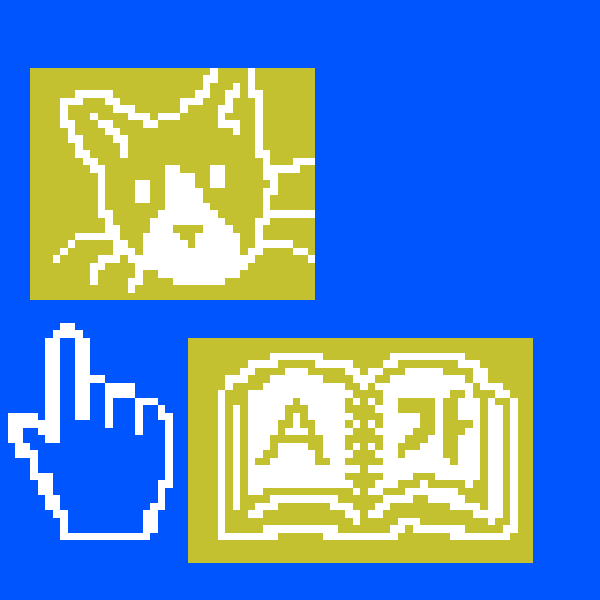
artifact from Hyperlink Press
Inspired by South Korean online LGBTQ communities (667) in the 2000s, Hyperlink Press is an online publication and curatorial initiative to showcase work by artists navigating the in-between spaces of technology and traditional art medium. Hyperlink Press’s mission is to empower the underrepresented history, experience, and identity in both the tech field and art gallery system.
https://readymag.com/u71627244/HYPERLINKPRESS/

artifact from Hyperlink Press
(730)
2019
Afrotectopia
Ari Melenciano
[Ari] Melenciano designed the School of Afrotectopia as both an experiment in alternative pedagogy and as an exploration of the ways in which Black culture, art, and technology are entwined. The school is part of a larger Afrotectopia universe […] focused on building a network of Black creators, (425) celebrating their multimedia designs, sharing resources, and “exposing the possibilities at these intersections” for people entering the fields of new media,” Melenciano says. “Within those missions, education and access is fundamental. The School of Afrotectopia was designed to reinforce those same values through two weeks of free workshops.” […]
“As with much of the general mission within my own personal work, including Afrotectopia, it’s about synthesizing a lot of different branches of knowledge and exposing the relationships [between material that is often assumed to be siloed],” Melenciano says. “The instructors of Afrotectopia all exhibit a great ability to create in interdisciplinary forms, allowing for technology-oriented pedagogy that is much more culturally relevant and approachable.”
2019, Ari Melenciano, https://www.afrotectopia.com/; excerpt from Evan Nicole Brown, “Designing an Experimental Technology Curriculum By—and For—Black Creatives,” AIGA Eye on Design, March 17, 2020, https://eyeondesign.aiga.org/afrotectopia/

Afrotectopia logo
[Ari] Melenciano designed the School of Afrotectopia as both an experiment in alternative pedagogy and as an exploration of the ways in which Black culture, art, and technology are entwined. The school is part of a larger Afrotectopia universe […] focused on building a network of Black creators, (425) celebrating their multimedia designs, sharing resources, and “exposing the possibilities at these intersections” for people entering the fields of new media,” Melenciano says. “Within those missions, education and access is fundamental. The School of Afrotectopia was designed to reinforce those same values through two weeks of free workshops.” […]
“As with much of the general mission within my own personal work, including Afrotectopia, it’s about synthesizing a lot of different branches of knowledge and exposing the relationships [between material that is often assumed to be siloed],” Melenciano says. “The instructors of Afrotectopia all exhibit a great ability to create in interdisciplinary forms, allowing for technology-oriented pedagogy that is much more culturally relevant and approachable.”
2019, Ari Melenciano, https://www.afrotectopia.com/; excerpt from Evan Nicole Brown, “Designing an Experimental Technology Curriculum By—and For—Black Creatives,” AIGA Eye on Design, March 17, 2020, https://eyeondesign.aiga.org/afrotectopia/
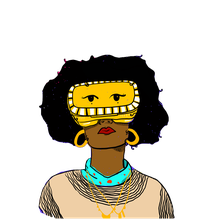
Afrotectopia logo
(731)
2019
Recoding Utopias: The Importance of Queer Spaces
Feminist Internet
Clara Finnigan: We’re exploring how queerness is rendered through space, whether that be nightlife, technology, policy, or archives. We’ll be speaking to the people at the forefront of these spaces. […] Queerness (305) rids itself of binary thinking all together. A general understanding of queerness is that it’s an umbrella term used to describe non-normative identities in relation to gender and sexuality. […]
Conor Rigby: I identify as queer in regards to my sexuality, but I’m also exploring how it affects my politics and mindset as well. You can sink deeper into this by looking into the act of queering. Lucas LaRochelle of Queering the Map noticed that the Google definition of queering is to spoil or to ruin. Also Google’s definition of queer itself is the state or condition of being strange. These definitions might be problematic, however it’s useful to see queerness or queering as being something that’s able to disrupt an existing system.
2019, Clara Finnigan and Conor Rigby, June 25, 2019, in Feminist Internet (x) Podcast, produced by Somerset House Studios, podcast, audio, https://audioboom.com/posts/7298728-recoding-utopias-the-importance-of-queer-spaces-feminist-internet; transcript 2:01–3:46
Contributors include Nadine Artois of Pxssy Palace, Lucas LaRochelle of Queering the Map, Amy Lamé, Jim MacSweeney, Ingo Cando, Clara Finnigan, and Conor Rigby.
https://www.feministinternet.com/podcast/
Clara Finnigan: We’re exploring how queerness is rendered through space, whether that be nightlife, technology, policy, or archives. We’ll be speaking to the people at the forefront of these spaces. […] Queerness (305) rids itself of binary thinking all together. A general understanding of queerness is that it’s an umbrella term used to describe non-normative identities in relation to gender and sexuality. […]
Conor Rigby: I identify as queer in regards to my sexuality, but I’m also exploring how it affects my politics and mindset as well. You can sink deeper into this by looking into the act of queering. Lucas LaRochelle of Queering the Map noticed that the Google definition of queering is to spoil or to ruin. Also Google’s definition of queer itself is the state or condition of being strange. These definitions might be problematic, however it’s useful to see queerness or queering as being something that’s able to disrupt an existing system.
2019, Clara Finnigan and Conor Rigby, June 25, 2019, in Feminist Internet (x) Podcast, produced by Somerset House Studios, podcast, audio, https://audioboom.com/posts/7298728-recoding-utopias-the-importance-of-queer-spaces-feminist-internet; transcript 2:01–3:46
Contributors include Nadine Artois of Pxssy Palace, Lucas LaRochelle of Queering the Map, Amy Lamé, Jim MacSweeney, Ingo Cando, Clara Finnigan, and Conor Rigby.
https://www.feministinternet.com/podcast/
(732)
2019
Towards a Feminist Internet and its Governance in India and Beyond
Radhika Radhakrishnan
The Internet holds great promise as a democratizing enabler of social, economic, cultural and political rights. How far has this vision been actualized for women and gender minorities in the Global South? How can we envision a “feminist internet”? (535) How would it be different from the Internet of today? One of the aims of this syllabus is to unsettle the idea of the Internet and its governance as being a “First-World” concern. It attempts to unpack the politics of one’s location while accessing the Internet and how those social, cultural, economic, political, and geographic locations complicate one’s experience in cyberspace.
2019, Radhika Radhakrishnan (syllabus, created for Gender, Media, Culture course at Tata Institute of Social Sciences, Mumbai, India), https://feministinternet.org/sites/default/file/Towards%20a%20Feminist%20Internet%20and%20its%20Governance%20in%20India%20and%20Beyond%20Academic%20Syllabus%20by%20Radhika%20Radhakrishnan.pdf
The Internet holds great promise as a democratizing enabler of social, economic, cultural and political rights. How far has this vision been actualized for women and gender minorities in the Global South? How can we envision a “feminist internet”? (535) How would it be different from the Internet of today? One of the aims of this syllabus is to unsettle the idea of the Internet and its governance as being a “First-World” concern. It attempts to unpack the politics of one’s location while accessing the Internet and how those social, cultural, economic, political, and geographic locations complicate one’s experience in cyberspace.
2019, Radhika Radhakrishnan (syllabus, created for Gender, Media, Culture course at Tata Institute of Social Sciences, Mumbai, India), https://feministinternet.org/sites/default/file/Towards%20a%20Feminist%20Internet%20and%20its%20Governance%20in%20India%20and%20Beyond%20Academic%20Syllabus%20by%20Radhika%20Radhakrishnan.pdf
(733)
2019
Cyber-Feminism in the Arab World
Haneen Abu Al Neel
We would be mistaken to think that cyberfeminism in the Arab world is a Western idea. Since 1999, Arab women have shown the world their shrewdness in mastering cyberspaces for activism and organizing. (397) One such example is the establishment of the Arab Women Solidarity Association (AWSA) in Egypt in 1982 by 120 women and the leadership of Nawal El-Saadawi.
AWSA’s mission was to link the struggle of Arabs for liberation and freedom from economic, cultural, and media domination to the liberation of Arab women, a purpose that motivated countless women and men internationally to join and form more chapters. With its doors open to international membership, AWSA was also celebrated as the first Pan-Arab women’s organization with international status at the United Nations. The membership had a strong presence in cyberspace. While sadly, AWSA was shut down by the Egyptian government eventually, its international followership was left thirsty to create more spaces for organized activism online.
2019, Haneen Abu Al Neel, Arab America, November 6, 2019, https://www.arabamerica.com/cyber-feminism-in-the-arab-world/
We would be mistaken to think that cyberfeminism in the Arab world is a Western idea. Since 1999, Arab women have shown the world their shrewdness in mastering cyberspaces for activism and organizing. (397) One such example is the establishment of the Arab Women Solidarity Association (AWSA) in Egypt in 1982 by 120 women and the leadership of Nawal El-Saadawi.
AWSA’s mission was to link the struggle of Arabs for liberation and freedom from economic, cultural, and media domination to the liberation of Arab women, a purpose that motivated countless women and men internationally to join and form more chapters. With its doors open to international membership, AWSA was also celebrated as the first Pan-Arab women’s organization with international status at the United Nations. The membership had a strong presence in cyberspace. While sadly, AWSA was shut down by the Egyptian government eventually, its international followership was left thirsty to create more spaces for organized activism online.
2019, Haneen Abu Al Neel, Arab America, November 6, 2019, https://www.arabamerica.com/cyber-feminism-in-the-arab-world/
(734)
2019
Remembering LB City: Cyber Lesbian Utopia Vol.1
Hyperlink Press
Preceding all the hyper femme online communities of the later 2010s, LB City was founded as a lesbian activist group in January 2000 with a vision to realize the cyber lesbian utopia. Initially LB City was planned to be a live stream platform that ended up becoming a social platform imagining the alternative “lesbian” society. (83) The LB City community used “lesbian” as an antithesis to Korean patriarchical heteronormativity and hoping to nurture socially inclusive language and culture. Interview from personweb in 2001 supports that the LB City’s use of “lesbian” extend beyond describing sexual orientation. “LB City’s ultimate goal is more than an attempt to create an entertainment website for queer women. We are preparing for the society where qeer women can live freely. So LB City is a Beta test for that world where we can practice inclusive living. Eventually this shouldn’t stop in online but implement in reality. Therefore this project is more so than city planning for Lesbians but thinking about what it means to speak in lesbian, sing in lesbian and dream with fellow lesbian citizens.”
2019, Taehee Whang (Seoul: Hyperlink Press, (655) 2019); excerpt p. 2
https://issuu.com/hyperlinkpress/docs/lb_city
Korea
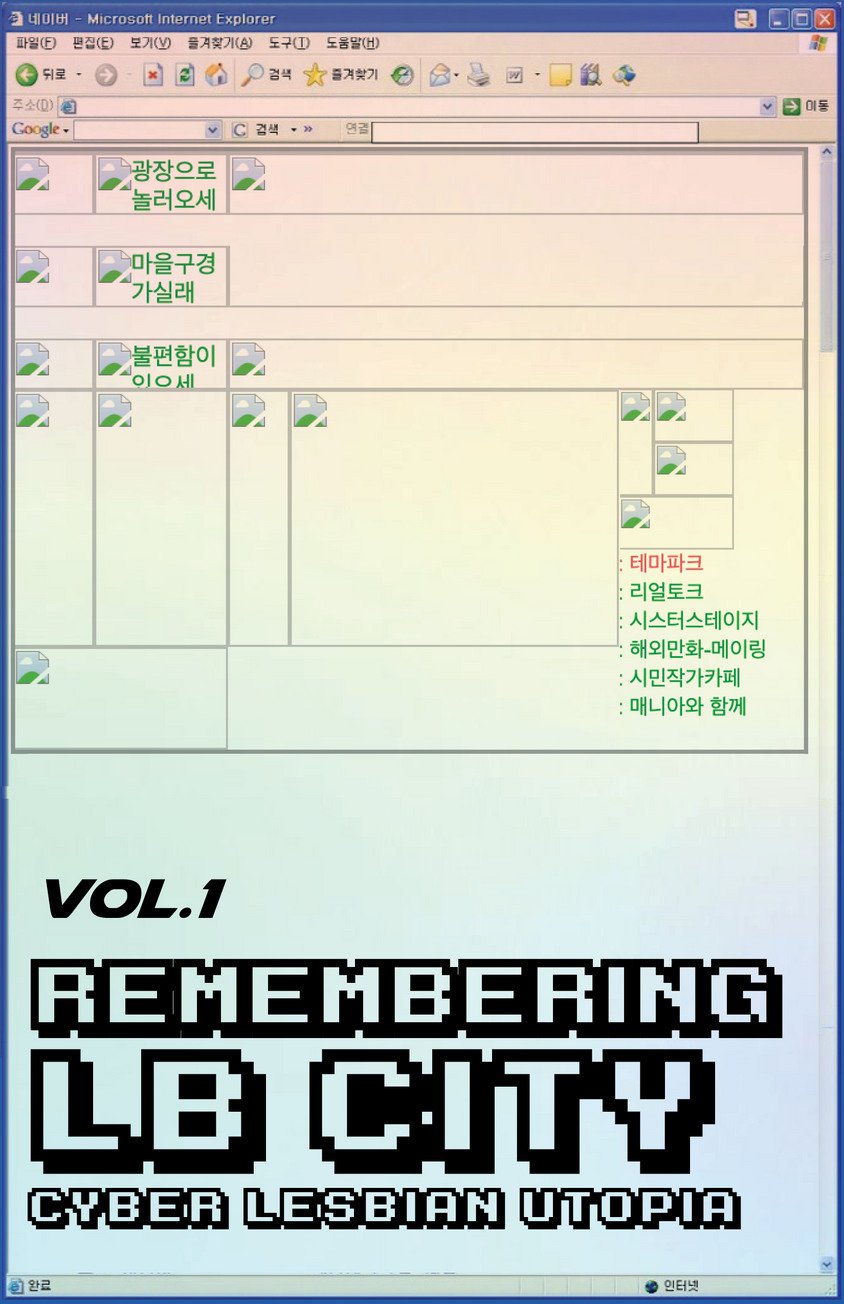
cover of Remembering LB City: Cyber Lesbian Utopia Vol.1
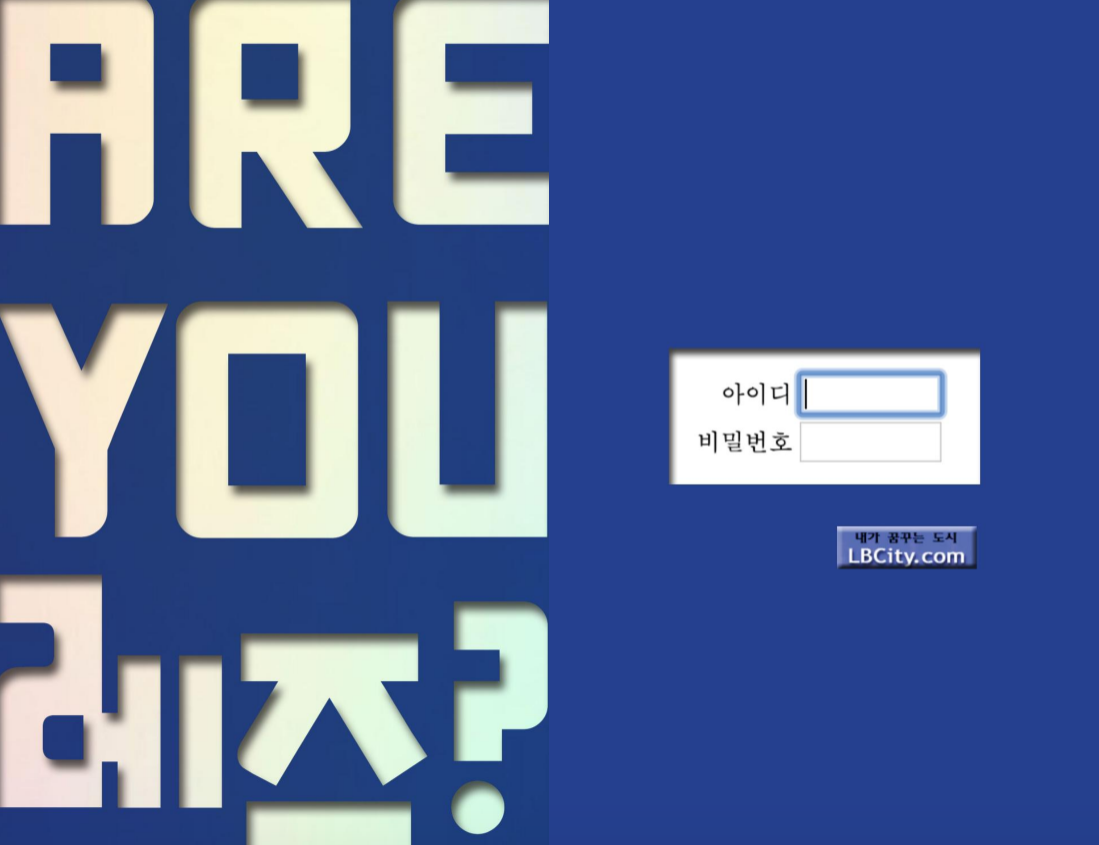
p2–3 of Remembering LB City: Cyber Lesbian Utopia Vol.1
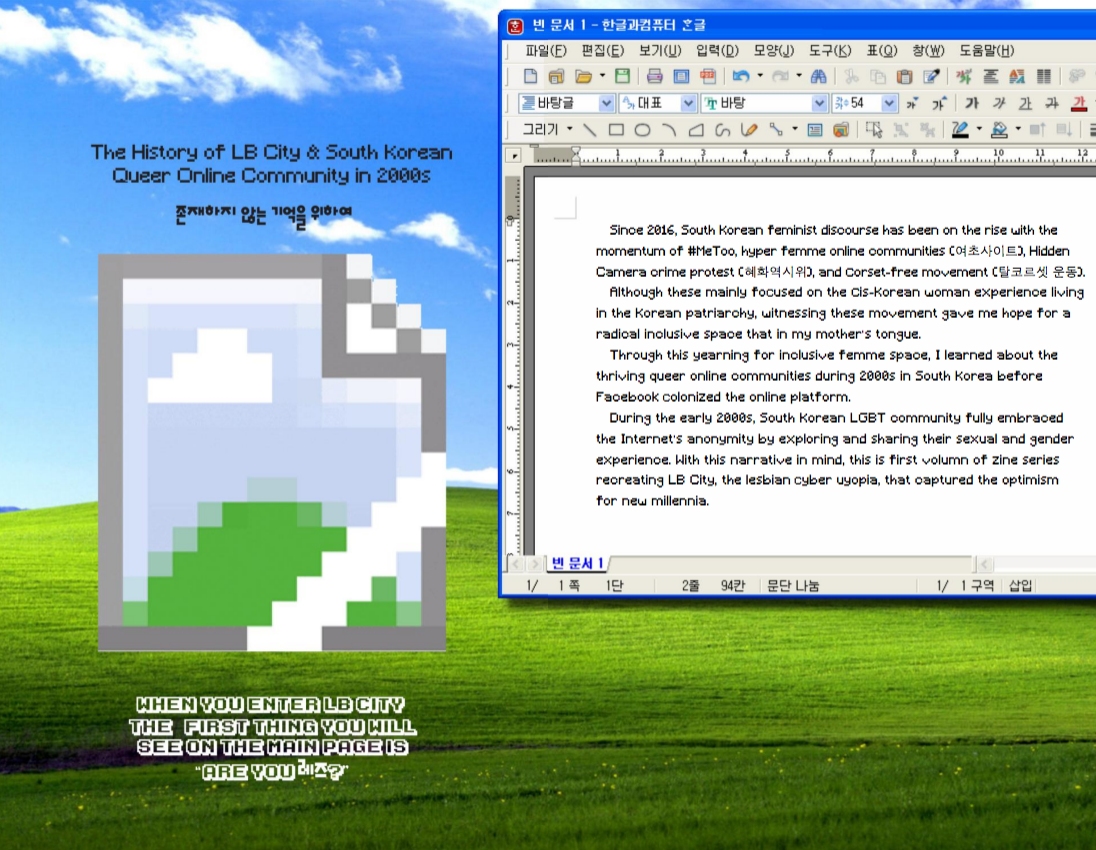
p4–5 of Remembering LB City: Cyber Lesbian Utopia Vol.1
Preceding all the hyper femme online communities of the later 2010s, LB City was founded as a lesbian activist group in January 2000 with a vision to realize the cyber lesbian utopia. Initially LB City was planned to be a live stream platform that ended up becoming a social platform imagining the alternative “lesbian” society. (83) The LB City community used “lesbian” as an antithesis to Korean patriarchical heteronormativity and hoping to nurture socially inclusive language and culture. Interview from personweb in 2001 supports that the LB City’s use of “lesbian” extend beyond describing sexual orientation. “LB City’s ultimate goal is more than an attempt to create an entertainment website for queer women. We are preparing for the society where qeer women can live freely. So LB City is a Beta test for that world where we can practice inclusive living. Eventually this shouldn’t stop in online but implement in reality. Therefore this project is more so than city planning for Lesbians but thinking about what it means to speak in lesbian, sing in lesbian and dream with fellow lesbian citizens.”
2019, Taehee Whang (Seoul: Hyperlink Press, (655) 2019); excerpt p. 2
https://issuu.com/hyperlinkpress/docs/lb_city
Korea
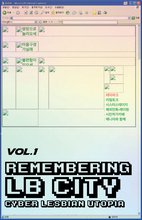
cover of Remembering LB City: Cyber Lesbian Utopia Vol.1
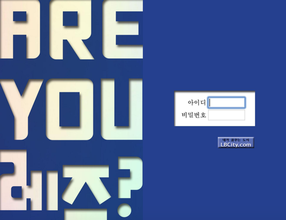
p2–3 of Remembering LB City: Cyber Lesbian Utopia Vol.1
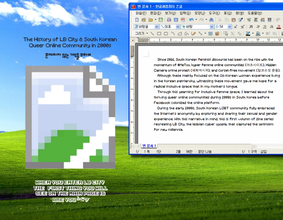
p4–5 of Remembering LB City: Cyber Lesbian Utopia Vol.1
(735)
2019
Tecnología ancestral, conocimiento resguardado por la sabiduría de las mujeres [Ancestral Technology, Knowledge Protected by the Wisdom of Women]
Ixchel Aguirre
Pero sí, aunque se intente poner en duda, sí es tecnología. Tecnología que se vale de la oralidad para pasar de generación en generación y para continuar evolucionando, tecnología que responde a necesidades inmediatas y de la cual son guardianas muchas mujeres. (510)
Las tecnologías ancestrales utilizaron las manos humanas como sus principales herramientas. Más tarde fueron complementadas con otras herramientas auxiliares, como lo revelan las excavaciones y estudios de sitios arqueológicos. Una de las tecnologías que más ha resistido el paso del tiempo es el tejido, herramienta que permitió dejar atrás la desnudez con la que frágilmente se enfrentaba a los ambientes hostiles de la naturaleza.
But yes, even if you try to question it, it is technology. Technology that uses orality to pass from generation to generation and to continue evolving, technology that responds to immediate needs and of which many women are guardians.
Ancestral technologies (516) used human hands as their main tools. Later they were supplemented with other auxiliary tools, as revealed by excavations and studies of archeological sites. One of the technologies that has most resisted the passage of time is weaving, a tool that allowed us to leave behind the nudity with which we fragilely faced the hostile environments of nature.
2019, Ixchel Aguirre, Luchadoras, July 19, 2019, https://luchadoras.mx/tecnologias-ancestrales/
Editor’s Note: Tecnología Ancestral is a part of the Tejedoras de tecnología series from Luchadoras. (355) —MS
Mexico
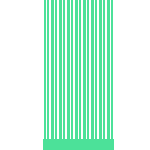
Graphic from Chapter 1 of Technolovers, https://luchadoras.mx/tecnolovers/
Pero sí, aunque se intente poner en duda, sí es tecnología. Tecnología que se vale de la oralidad para pasar de generación en generación y para continuar evolucionando, tecnología que responde a necesidades inmediatas y de la cual son guardianas muchas mujeres. (510)
Las tecnologías ancestrales utilizaron las manos humanas como sus principales herramientas. Más tarde fueron complementadas con otras herramientas auxiliares, como lo revelan las excavaciones y estudios de sitios arqueológicos. Una de las tecnologías que más ha resistido el paso del tiempo es el tejido, herramienta que permitió dejar atrás la desnudez con la que frágilmente se enfrentaba a los ambientes hostiles de la naturaleza.
But yes, even if you try to question it, it is technology. Technology that uses orality to pass from generation to generation and to continue evolving, technology that responds to immediate needs and of which many women are guardians.
Ancestral technologies (516) used human hands as their main tools. Later they were supplemented with other auxiliary tools, as revealed by excavations and studies of archeological sites. One of the technologies that has most resisted the passage of time is weaving, a tool that allowed us to leave behind the nudity with which we fragilely faced the hostile environments of nature.
2019, Ixchel Aguirre, Luchadoras, July 19, 2019, https://luchadoras.mx/tecnologias-ancestrales/
Editor’s Note: Tecnología Ancestral is a part of the Tejedoras de tecnología series from Luchadoras. (355) —MS
Mexico

Graphic from Chapter 1 of Technolovers, https://luchadoras.mx/tecnolovers/
(736)
2019
Refiguring the Future
Heather Dewey-Hagborg, Dorothy R. Santos
Discourses of science fiction, technology, and speculation have historically offered visions of the future that recapitulate dominant culture, projecting images of tomorrow through the existing capitalist, racist, and patriarchal structures of today. Interested in rupturing these systems, Refiguring the Future is inspired by artist Morehshin Allahyari’s use of “refiguring” as a feminist, decolonial, and activist practice. (559) In this exhibition, we seek to “refigure the future”: to push, probe, tear apart, and re-envision what the future can be. Looking beyond the status quo, we sought out feminist, queer, decolonial, anti-racist, and anti-ableist artists concerned with our technological and political moment. Informed by the punk ethos of DIY, the artists in Refiguring the Future deeply mine the historical and cultural roots of our current moment, pull apart the artifice of contemporary technology, and sift through the pieces to forge new visions of what is possible. Working across an array of mediums and approaches—from analog books to augmented reality (AR)—these artists address and examine a tumultuous present in order to produce a more inclusive future.
2019, Heather Dewey-Hagborg and Dorothy R. Santos, curs. (exhibition, Hunter College Art Galleries, New York, NY, February 8, 2019–March 31, 2019); excerpt from Heather Dewey-Hagborg and Dorothy R. Santos, “Refiguring the Future, 2019,” Refresh, https://refreshart.tech/2019rtf; referred by Boaz Sender
Artists include Barak adé Soleil, Morehshin Allahyari, Lee Blalock, Zach Blas, micha cárdenas + Abraham Avnisan, In Her Interior (Virginia Barratt + Francesca da Rimini), Mary Maggic, Lauren McCarthy, SHAWNÉ MICHELAIN HOLLOWAY, Claire Pentecost + Martha Pentecost, Sonya Rapoport, Sputniko! + Tomomi Nishizawa, Stephanie Syjuco, and Pinar Yoldas.
New York

Lauren McCarthy, image from https://refreshart.tech/2019rtf
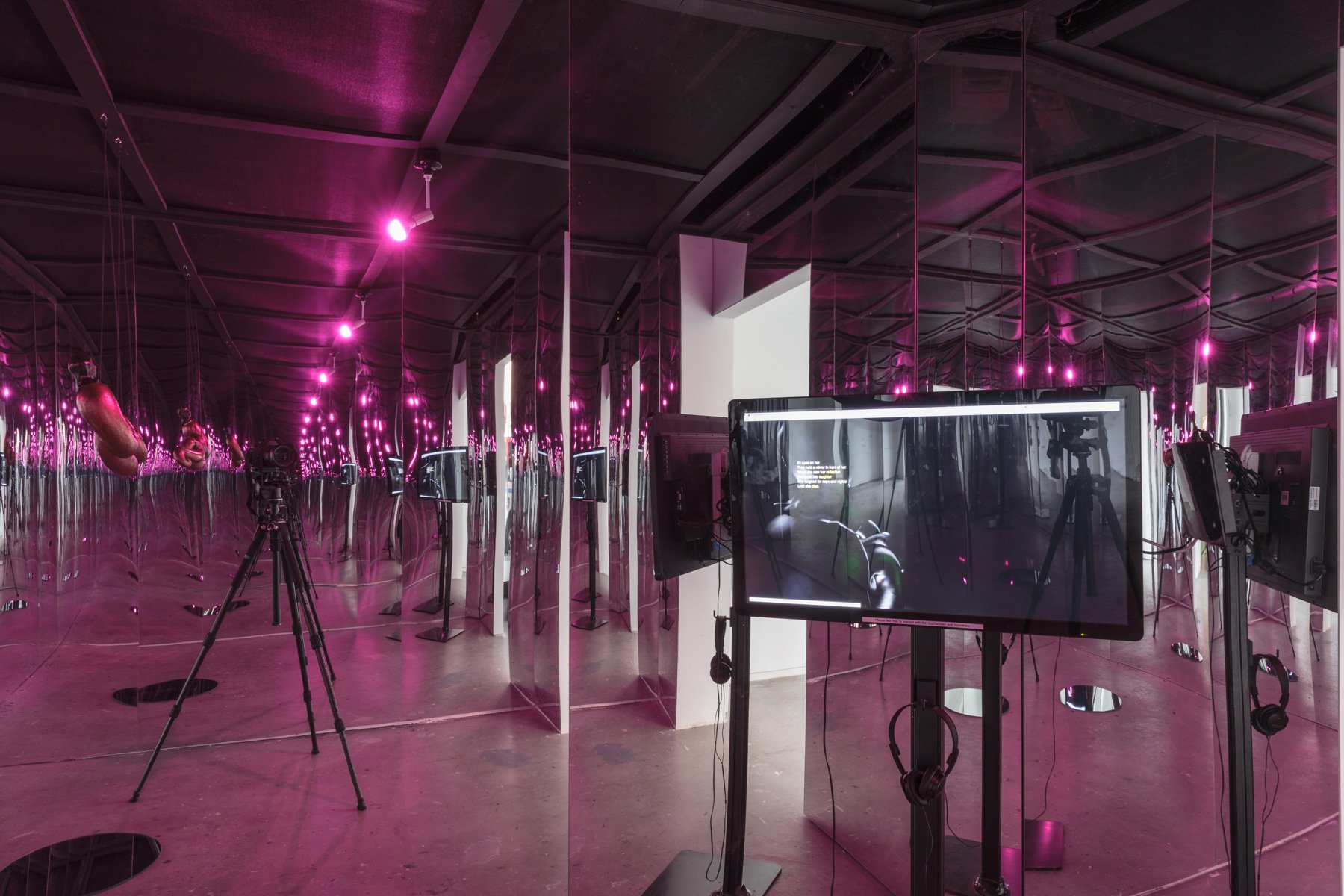
image from https://refreshart.tech/2019rtf

Mary Maggic, image from https://refreshart.tech/2019rtf
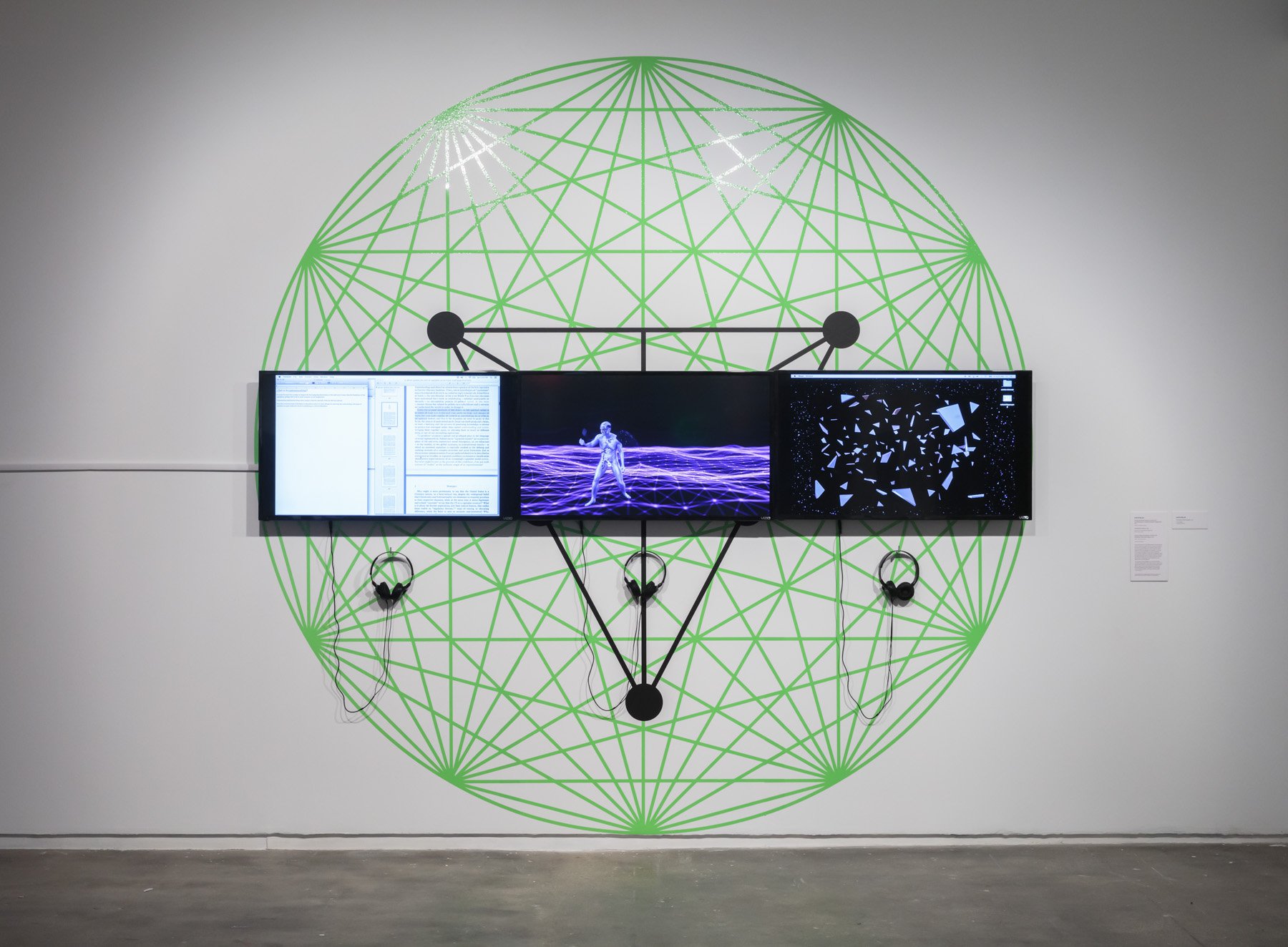
image from https://refreshart.tech/2019rtf
Discourses of science fiction, technology, and speculation have historically offered visions of the future that recapitulate dominant culture, projecting images of tomorrow through the existing capitalist, racist, and patriarchal structures of today. Interested in rupturing these systems, Refiguring the Future is inspired by artist Morehshin Allahyari’s use of “refiguring” as a feminist, decolonial, and activist practice. (559) In this exhibition, we seek to “refigure the future”: to push, probe, tear apart, and re-envision what the future can be. Looking beyond the status quo, we sought out feminist, queer, decolonial, anti-racist, and anti-ableist artists concerned with our technological and political moment. Informed by the punk ethos of DIY, the artists in Refiguring the Future deeply mine the historical and cultural roots of our current moment, pull apart the artifice of contemporary technology, and sift through the pieces to forge new visions of what is possible. Working across an array of mediums and approaches—from analog books to augmented reality (AR)—these artists address and examine a tumultuous present in order to produce a more inclusive future.
2019, Heather Dewey-Hagborg and Dorothy R. Santos, curs. (exhibition, Hunter College Art Galleries, New York, NY, February 8, 2019–March 31, 2019); excerpt from Heather Dewey-Hagborg and Dorothy R. Santos, “Refiguring the Future, 2019,” Refresh, https://refreshart.tech/2019rtf; referred by Boaz Sender
Artists include Barak adé Soleil, Morehshin Allahyari, Lee Blalock, Zach Blas, micha cárdenas + Abraham Avnisan, In Her Interior (Virginia Barratt + Francesca da Rimini), Mary Maggic, Lauren McCarthy, SHAWNÉ MICHELAIN HOLLOWAY, Claire Pentecost + Martha Pentecost, Sonya Rapoport, Sputniko! + Tomomi Nishizawa, Stephanie Syjuco, and Pinar Yoldas.
New York

Lauren McCarthy, image from https://refreshart.tech/2019rtf
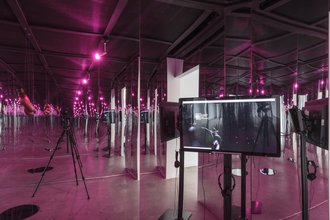
image from https://refreshart.tech/2019rtf

Mary Maggic, image from https://refreshart.tech/2019rtf
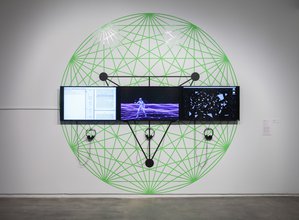
image from https://refreshart.tech/2019rtf
(737)
2019
Daddy Residency
Nahee Kim
I plan to have a baby after seven years by artificial insemination. (628)
And I’d like to have a variety of companions for that rigorous but invaluable parenting experience. So I’m launching this open call for daddy residents who want to raise the baby with me for a certain amount of time. The application deadline is 07.31.2025.
With the project <daddy residency="">, I’d like to initiate conversations about the necessity and possibility of designing my family structure. Since I think the existing ‘normal’ family structure consisted of one male adult, one female adult, and children follows the legacy of heteronormative patriarchy.</daddy>
2019, Nahee Kim, http://daddy-residency.com/
Editor’s Note: Daddy Residency was first introduced in the online exhibition at External Pages. Daddy Residency was also included in A.I.R. Gallery’s second iteration of The Scalability Project, co-curated by Patricia M. Hernandez, Roxana Fabius, and me. To introduce their project, we wrote, “Operated by nahee.app, a speculative program that writes itself while attempting to construct Kim’s sexual identity, preferences, and experiences as computational objects, Daddy Residency invites all genders and ‘daddies’ to help raise Kim’s child, who will be born via artificial fertilization.” —MS
https://nahee.app/daddy-residency.html
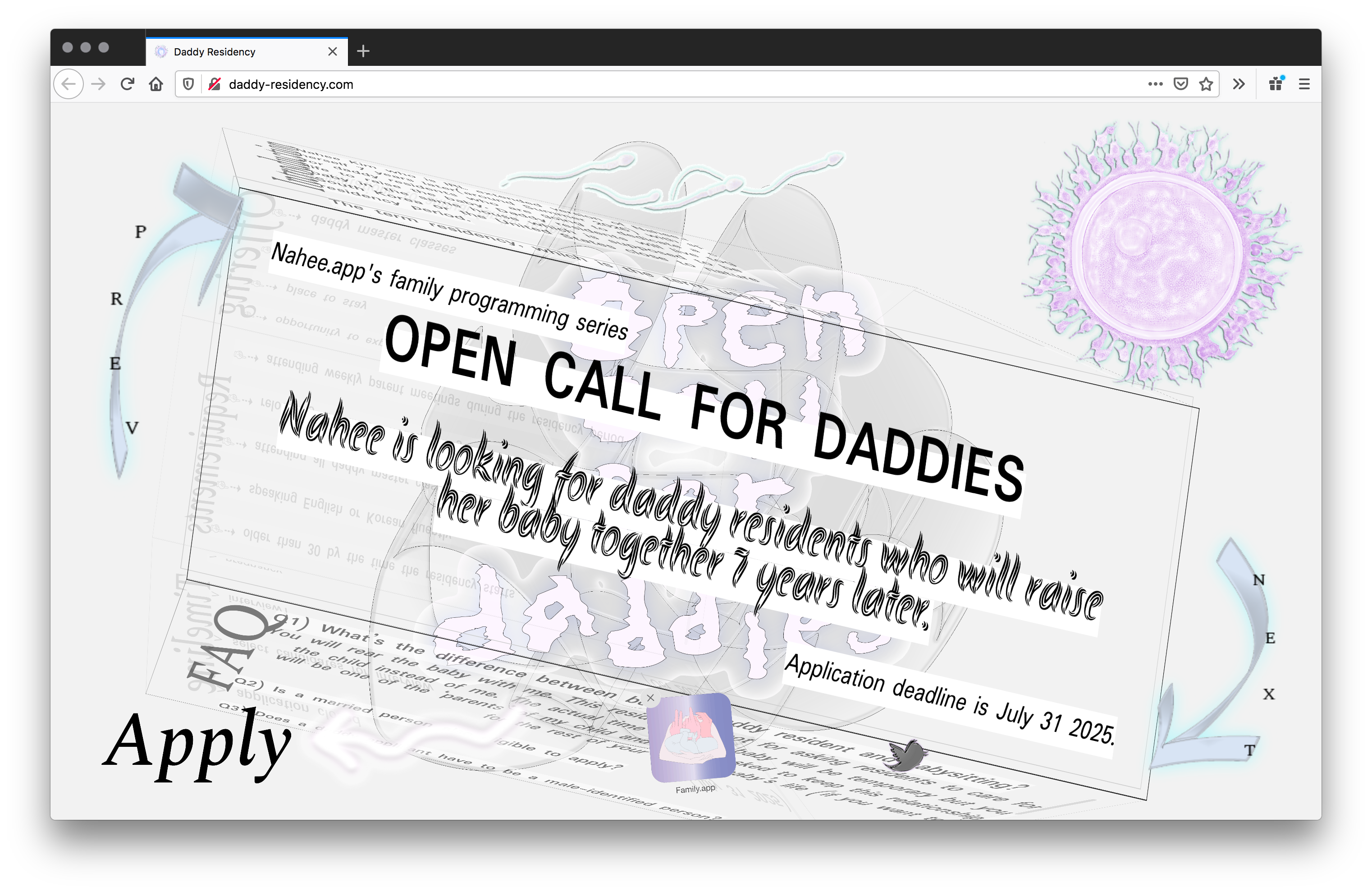
Screenshot, 2020, Firefox v76.0.1 on Mac OS 10.13.3; http://daddy-residency.com/

artifact from http://daddy-residency.com/

artifact from http://daddy-residency.com/

artifact from http://daddy-residency.com/
I plan to have a baby after seven years by artificial insemination. (628)
And I’d like to have a variety of companions for that rigorous but invaluable parenting experience. So I’m launching this open call for daddy residents who want to raise the baby with me for a certain amount of time. The application deadline is 07.31.2025.
With the project <daddy residency="">, I’d like to initiate conversations about the necessity and possibility of designing my family structure. Since I think the existing ‘normal’ family structure consisted of one male adult, one female adult, and children follows the legacy of heteronormative patriarchy.</daddy>
2019, Nahee Kim, http://daddy-residency.com/
Editor’s Note: Daddy Residency was first introduced in the online exhibition at External Pages. Daddy Residency was also included in A.I.R. Gallery’s second iteration of The Scalability Project, co-curated by Patricia M. Hernandez, Roxana Fabius, and me. To introduce their project, we wrote, “Operated by nahee.app, a speculative program that writes itself while attempting to construct Kim’s sexual identity, preferences, and experiences as computational objects, Daddy Residency invites all genders and ‘daddies’ to help raise Kim’s child, who will be born via artificial fertilization.” —MS
https://nahee.app/daddy-residency.html

Screenshot, 2020, Firefox v76.0.1 on Mac OS 10.13.3; http://daddy-residency.com/

artifact from http://daddy-residency.com/

artifact from http://daddy-residency.com/

artifact from http://daddy-residency.com/
(738)
2019
Black Software: The Internet & Racial Justice, from the AfroNet to Black Lives Matter
Charlton D. McIlwain
“Beginning with the simultaneous rise of civil rights and computer revolutions in the 1960s, McIlwain, for the first time, chronicles the long relationship between African Americans, computing technology, and the Internet. In turn, he argues that the forgotten figures who worked to make black politics central to the Internet’s birth and evolution paved the way for today's explosion of racial justice activism. From the 1960s to present, the book examines how computing technology has been used to neutralize the threat that black people pose to the existing racial order, but also how black people seized these new computing tools to build community, wealth, and wage a war for racial justice.Through archival sources and the voices of many of those who lived and made this history, Black Software centralizes African Americans’ role in the Internet's creation and evolution, illuminating both the limits and possibilities for using digital technology to push for racial justice in the United States and across the globe.” —Summary by the publisher Oxford University Press
https://global.oup.com/academic/product/black-software-9780190863845?cc=us&lang=en& https://www.are.na/block/6506697
“Beginning with the simultaneous rise of civil rights and computer revolutions in the 1960s, McIlwain, for the first time, chronicles the long relationship between African Americans, computing technology, and the Internet. In turn, he argues that the forgotten figures who worked to make black politics central to the Internet’s birth and evolution paved the way for today's explosion of racial justice activism. From the 1960s to present, the book examines how computing technology has been used to neutralize the threat that black people pose to the existing racial order, but also how black people seized these new computing tools to build community, wealth, and wage a war for racial justice.Through archival sources and the voices of many of those who lived and made this history, Black Software centralizes African Americans’ role in the Internet's creation and evolution, illuminating both the limits and possibilities for using digital technology to push for racial justice in the United States and across the globe.” —Summary by the publisher Oxford University Press
https://global.oup.com/academic/product/black-software-9780190863845?cc=us&lang=en& https://www.are.na/block/6506697
(739)
2019
Physical Tactics for Digital Colonialism
Morehshin Allahyari
Since 2016, [Morehshin] Allahyari has advanced the concept of digital colonialism to characterize the tendency for information technologies to be deployed in ways that reproduce colonial power relations. This performance focuses on the 3-D scanner, which is widely used by archeologists to capture detailed data about physical artifacts. Describing the device as “a tool of witchcraft and magic,” (643) Allahyari reframes 3-D scanning as a performative, embodied act with open-ended political potential. Working with a selection of replicas of cultural artifacts from the Middle East, Allahyari will perform live 3-D scans while speaking about the objects’ long histories as symbols and relics and their recent appropriation (320) in digital form by Western institutions, considering how these narratives intersect materially and poetically and how they may be resituated and rewritten.
2019, Morehshin Allahyari; excerpt from “Morehshin Allahyari: Physical Tactics for Digital Colonialism,” New Museum, https://www.newmuseum.org/exhibitions/view/morehshin-allahyari-physical-tactics-for-digital-colonialism
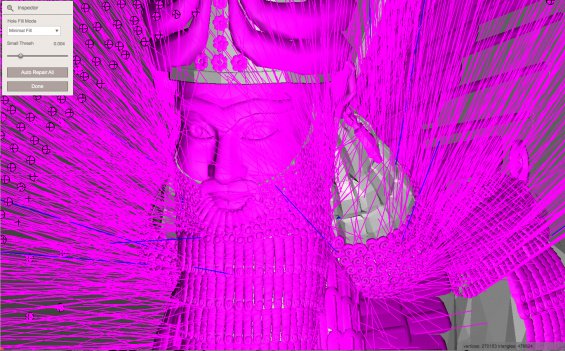
“Morehshin Allahyari, Lamassu, from the Material Speculation: ISIS series (2015–16). Courtesy the artist and Upfor Gallery”, image from https://www.newmuseum.org/calendar/view/1481/physical-tactics-for-digital-colonialism
Since 2016, [Morehshin] Allahyari has advanced the concept of digital colonialism to characterize the tendency for information technologies to be deployed in ways that reproduce colonial power relations. This performance focuses on the 3-D scanner, which is widely used by archeologists to capture detailed data about physical artifacts. Describing the device as “a tool of witchcraft and magic,” (643) Allahyari reframes 3-D scanning as a performative, embodied act with open-ended political potential. Working with a selection of replicas of cultural artifacts from the Middle East, Allahyari will perform live 3-D scans while speaking about the objects’ long histories as symbols and relics and their recent appropriation (320) in digital form by Western institutions, considering how these narratives intersect materially and poetically and how they may be resituated and rewritten.
2019, Morehshin Allahyari; excerpt from “Morehshin Allahyari: Physical Tactics for Digital Colonialism,” New Museum, https://www.newmuseum.org/exhibitions/view/morehshin-allahyari-physical-tactics-for-digital-colonialism
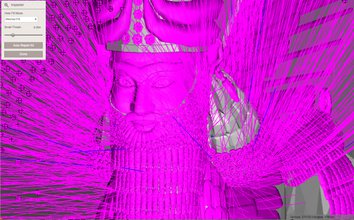
“Morehshin Allahyari, Lamassu, from the Material Speculation: ISIS series (2015–16). Courtesy the artist and Upfor Gallery”, image from https://www.newmuseum.org/calendar/view/1481/physical-tactics-for-digital-colonialism
(740)
2019
Slime Tech Lab
Ashley Jane Lewis, Ayodamola Tanimowo Okunseinde
The Slime Tech Lab (STL) is a mobile laboratory and living system that explores new futures through science, technology and storytelling. The STL is an art piece in itself—in roaming around New York it experiences feelings akin to the diaspora (300) as it navigates to unpack its own narrative. As a beacon for futuristic exploration, it unfolds to teach spectators of the marvel of slime mold, revealing how this primordial organism can inform us about problem solving, equity and social cooperation. Our aim is to investigate it within our local communities. What can we learn from slime mold (669) that can help us create an equitable society? What can be gleaned from biocultures that can help us reimagine borders and immigration? What would a future look like with decentralized information? The STL helps communities look to slime mold to envision vibrant, diverse futures through speculative design and microbiology.
2019, Ashley Jane Lewis and Ayodamola Tanimowo Okunseinde, http://slimetechlab.org/

artifact from http://slimetechlab.org/

“Physarum polycephalum or slime mold,” image from http://slimetechlab.org/
The Slime Tech Lab (STL) is a mobile laboratory and living system that explores new futures through science, technology and storytelling. The STL is an art piece in itself—in roaming around New York it experiences feelings akin to the diaspora (300) as it navigates to unpack its own narrative. As a beacon for futuristic exploration, it unfolds to teach spectators of the marvel of slime mold, revealing how this primordial organism can inform us about problem solving, equity and social cooperation. Our aim is to investigate it within our local communities. What can we learn from slime mold (669) that can help us create an equitable society? What can be gleaned from biocultures that can help us reimagine borders and immigration? What would a future look like with decentralized information? The STL helps communities look to slime mold to envision vibrant, diverse futures through speculative design and microbiology.
2019, Ashley Jane Lewis and Ayodamola Tanimowo Okunseinde, http://slimetechlab.org/

artifact from http://slimetechlab.org/

“Physarum polycephalum or slime mold,” image from http://slimetechlab.org/
(741)
2019
Hacking Diversity
Christina Dunbar-Hester
Hacking, as a mode of technical and cultural production, is commonly celebrated for its extraordinary freedoms of creation and circulation. Yet surprisingly few women participate in it: rates of involvement by technologically skilled women are drastically lower in hacking communities than in industry and academia. (220) […] Christina Dunbar-Hester shows that within this well-meaning volunteer world, beyond the sway of human resource departments and equal opportunity legislation, members of underrepresented groups face unique challenges. She brings together more than five years of firsthand research: attending software conferences and training events, working on message boards and listservs, and frequenting North American hackerspaces. She explores who participates in voluntaristic technology cultures, to what ends, and with what consequences. Digging deep into the fundamental assumptions underpinning STEM-oriented societies, Dunbar-Hester demonstrates that while the preferred solutions of tech enthusiasts—their “hacks” of projects and cultures—can ameliorate some of the “bugs” within their own communities, these methods come up short for issues of unequal social and economic power. Distributing “diversity” in technical production is not equal to generating justice.
2019, Christina Dunbar-Hester (Princeton, NJ: Princeton University Press, 2019); excerpt from Princeton University Press
https://press.princeton.edu/books/paperback/9780691192888/hacking-diversity
Hacking, as a mode of technical and cultural production, is commonly celebrated for its extraordinary freedoms of creation and circulation. Yet surprisingly few women participate in it: rates of involvement by technologically skilled women are drastically lower in hacking communities than in industry and academia. (220) […] Christina Dunbar-Hester shows that within this well-meaning volunteer world, beyond the sway of human resource departments and equal opportunity legislation, members of underrepresented groups face unique challenges. She brings together more than five years of firsthand research: attending software conferences and training events, working on message boards and listservs, and frequenting North American hackerspaces. She explores who participates in voluntaristic technology cultures, to what ends, and with what consequences. Digging deep into the fundamental assumptions underpinning STEM-oriented societies, Dunbar-Hester demonstrates that while the preferred solutions of tech enthusiasts—their “hacks” of projects and cultures—can ameliorate some of the “bugs” within their own communities, these methods come up short for issues of unequal social and economic power. Distributing “diversity” in technical production is not equal to generating justice.
2019, Christina Dunbar-Hester (Princeton, NJ: Princeton University Press, 2019); excerpt from Princeton University Press
https://press.princeton.edu/books/paperback/9780691192888/hacking-diversity
(742)
2019
Ciberfeminismo y apropiación tecnológica en América Latina [Cyberfeminism and technological appropriation in Latin America]
Lucía Benítez-Eyzaguirre
Se ofrece aquí un mapeo y diagnóstico de iniciativas relevantes de ciberfeminismo en diferentes países de América Latina. La relación no es exhaustiva, aunque sí completa para acercar las diferentes perspectivas a la hora de relacionar género y tecnología desde el activismo y los movimientos sociales. Se constata el avance lento en participación de las mujeres en las políticas de la sociedad de la información, así como en la programación y diseño de software, mientras se mantiene la brecha digital. Los datos abren la puerta para ser optimistas respecto a la paridad, ya que en los casos de Bolivia y Nicaragua se ha sobrepasado la paridad de género.
This paper offers a mapping and diagnostic of relevant initiatives of cyberfeminism in different countries of Latin America. (611) The list is not exhaustive, though it is complete in approaching the different perspectives when relating gender and technology from the activism and social movements. We verify the slow advance in women’s participation in information society policies, as well as in software programming and designing, maintaining the digital divide. Data gives way to optimism on parity, considering that in Bolivia and Nicaragua the gender parity has been exceeded.
2019, Lucía Benítez-Eyzaguirre, in “Tecnopolítica disidente y cultura digital en América Latina,” ed. Tommaso Gravante, special issue, Virtualis 10, no. 18 (2019): pp. 1–15; excerpt p. 1
https://www.are.na/block/8109391
Se ofrece aquí un mapeo y diagnóstico de iniciativas relevantes de ciberfeminismo en diferentes países de América Latina. La relación no es exhaustiva, aunque sí completa para acercar las diferentes perspectivas a la hora de relacionar género y tecnología desde el activismo y los movimientos sociales. Se constata el avance lento en participación de las mujeres en las políticas de la sociedad de la información, así como en la programación y diseño de software, mientras se mantiene la brecha digital. Los datos abren la puerta para ser optimistas respecto a la paridad, ya que en los casos de Bolivia y Nicaragua se ha sobrepasado la paridad de género.
This paper offers a mapping and diagnostic of relevant initiatives of cyberfeminism in different countries of Latin America. (611) The list is not exhaustive, though it is complete in approaching the different perspectives when relating gender and technology from the activism and social movements. We verify the slow advance in women’s participation in information society policies, as well as in software programming and designing, maintaining the digital divide. Data gives way to optimism on parity, considering that in Bolivia and Nicaragua the gender parity has been exceeded.
2019, Lucía Benítez-Eyzaguirre, in “Tecnopolítica disidente y cultura digital en América Latina,” ed. Tommaso Gravante, special issue, Virtualis 10, no. 18 (2019): pp. 1–15; excerpt p. 1
https://www.are.na/block/8109391
(743)
2019
Dream Babes 2.0
Victoria Sin
Speculative fiction is a tool for escapism and a productive strategy for hope and critical practice; this is why it is an important part of our work—it’s a matter of world-making in a world not made for us. Science Fiction is more important than what is actually going on. (487) And considering what is actually going on in the world right now—what better time is there to ask “what if”? What if gay men were given a nation in a world of incantation? What if there was a place for Black trans people, where chosen names and gender identity were always recognised? What if I could change the way I exist in my body? What is black holes were really gaping horny orifices? (680) What if you were presented with a book you could never finish? What if we looked at Nigeria as a site of time travel? What if you could imagine the future of humanity? What if we could reinvent ourselves through writing? What would happen then?
2019, Victoria Sin, ed. (London: PSS, 2019); excerpt pp. 6–7
https://pssss.co/books/dream-babes-zine-2-0
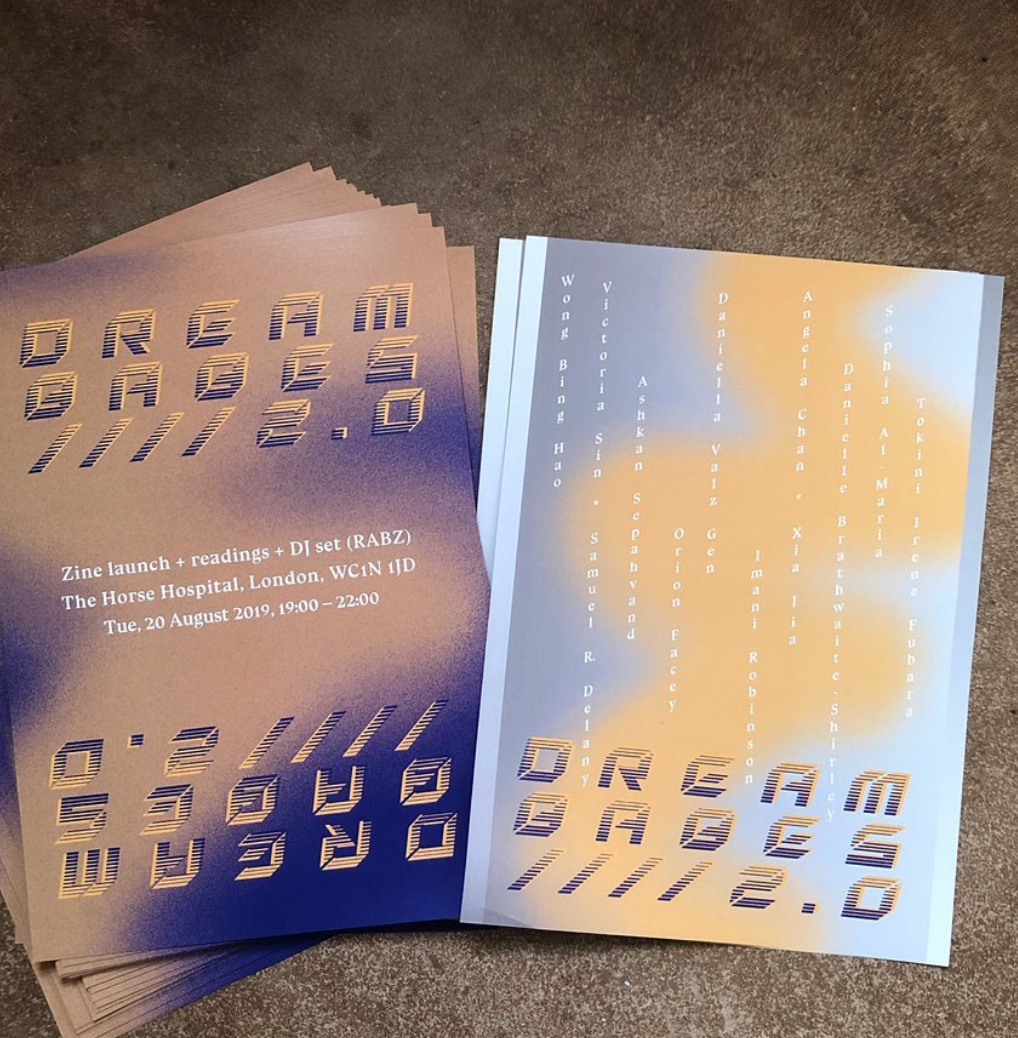
image from https://www.instagram.com/p/B1eL6hdFjGC/
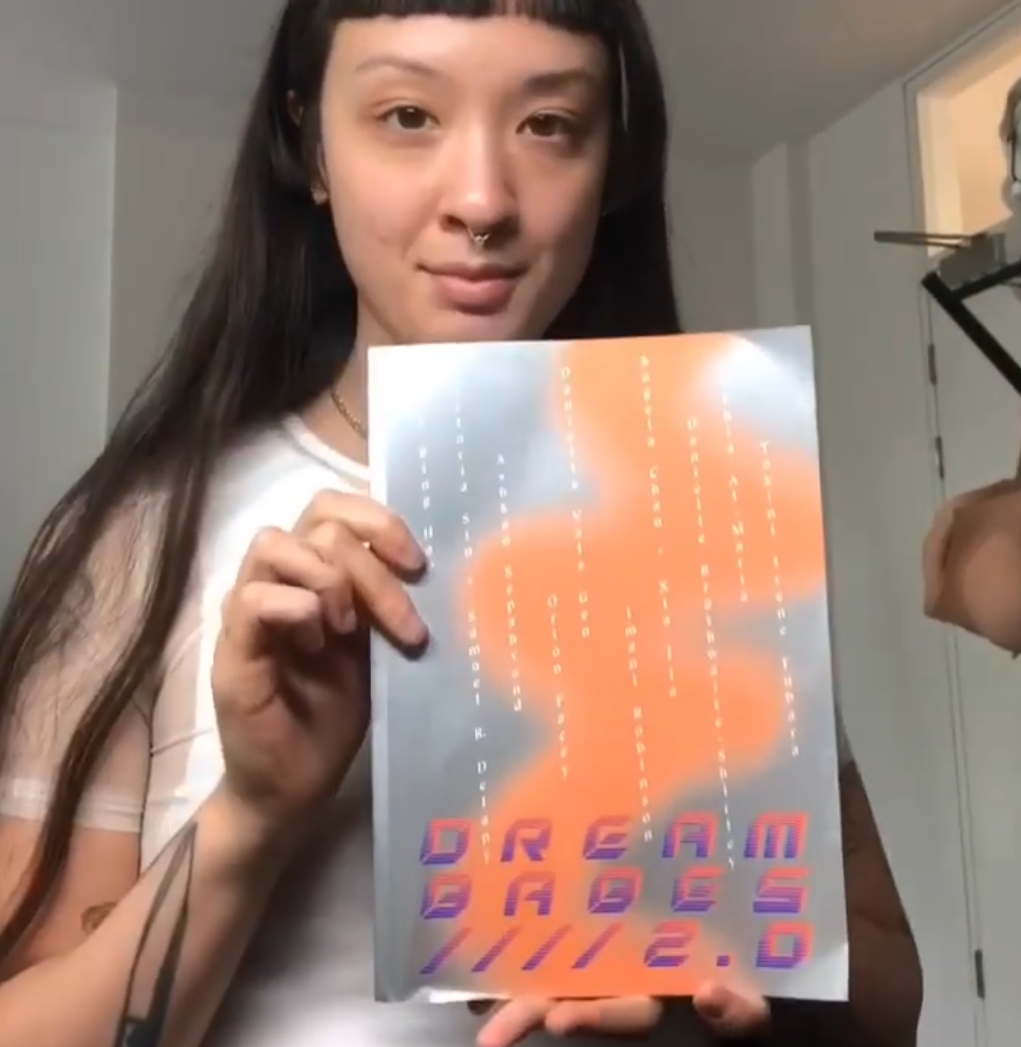
still from https://www.instagram.com/p/B1eL6hdFjGC/
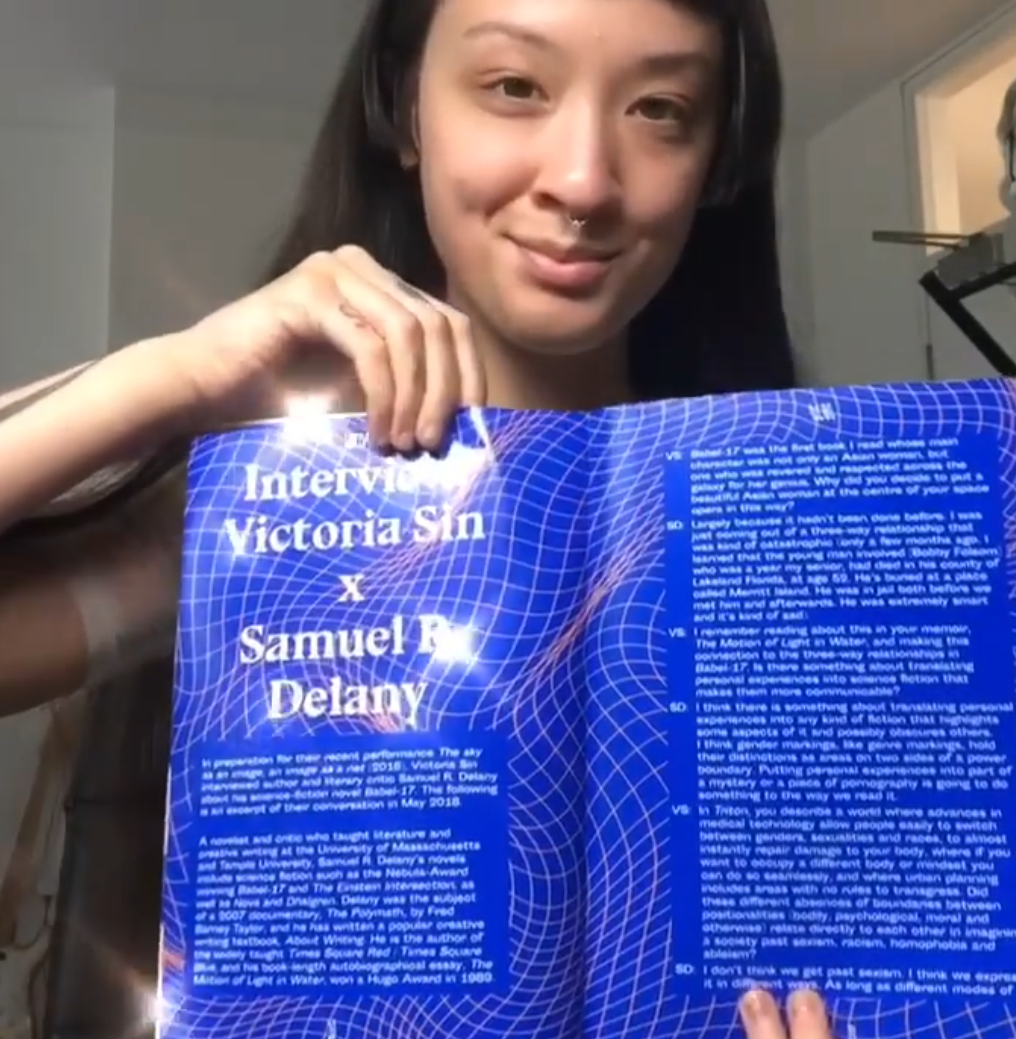
still from https://www.instagram.com/p/B1eL6hdFjGC/
Speculative fiction is a tool for escapism and a productive strategy for hope and critical practice; this is why it is an important part of our work—it’s a matter of world-making in a world not made for us. Science Fiction is more important than what is actually going on. (487) And considering what is actually going on in the world right now—what better time is there to ask “what if”? What if gay men were given a nation in a world of incantation? What if there was a place for Black trans people, where chosen names and gender identity were always recognised? What if I could change the way I exist in my body? What is black holes were really gaping horny orifices? (680) What if you were presented with a book you could never finish? What if we looked at Nigeria as a site of time travel? What if you could imagine the future of humanity? What if we could reinvent ourselves through writing? What would happen then?
2019, Victoria Sin, ed. (London: PSS, 2019); excerpt pp. 6–7
https://pssss.co/books/dream-babes-zine-2-0
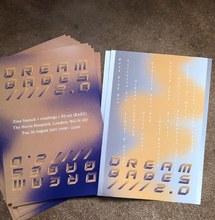
image from https://www.instagram.com/p/B1eL6hdFjGC/
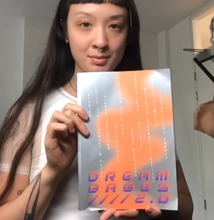
still from https://www.instagram.com/p/B1eL6hdFjGC/
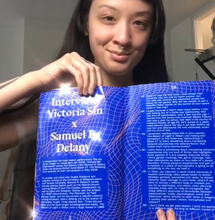
still from https://www.instagram.com/p/B1eL6hdFjGC/
(744)
2019
Beautiful Warriors: Technofeminist Practice in the 21st Century
Cornelia Sollfrank
Since the cyberfeminism of the 1990s, new ways of thinking and acting have proliferated, often as a reaction to new forms and dimensions of exploitation and discrimination. Issues have expanded from a purely informational dimension and its emancipatory potential into a material dimension. Questions of technology are now bound together with questions of ecology and the economy. Online and offline are no longer separate spheres, but have rather become a single continuum. […] Despite the great variety of existing positions, there is nevertheless something that binds them together; they all negotiate gender politics with reference to technology, and they all understand their praxis as an invitation to take up their social and aesthetic interventions, to carry on, and never give up. […] Their practices are networked, but often in the stratified, parallel universes of international art scenes, academic theory and research (primarily in the global North), political activism (primarily in the global South), and the techno-underground. To gather such diverse views into a single volume (575) is to traverse many territories and cross many borders—all to pursue the possibility of thinking and acting in common.
2019, Cornelia Sollfrank, ed. (Colchester, UK: Minor Compositions, 2019); excerpt from Cornelia Sollfrank, preface to Sollfrank, Beautiful Warriors, p. 3
https://www.minorcompositions.info/?p=976
Since the cyberfeminism of the 1990s, new ways of thinking and acting have proliferated, often as a reaction to new forms and dimensions of exploitation and discrimination. Issues have expanded from a purely informational dimension and its emancipatory potential into a material dimension. Questions of technology are now bound together with questions of ecology and the economy. Online and offline are no longer separate spheres, but have rather become a single continuum. […] Despite the great variety of existing positions, there is nevertheless something that binds them together; they all negotiate gender politics with reference to technology, and they all understand their praxis as an invitation to take up their social and aesthetic interventions, to carry on, and never give up. […] Their practices are networked, but often in the stratified, parallel universes of international art scenes, academic theory and research (primarily in the global North), political activism (primarily in the global South), and the techno-underground. To gather such diverse views into a single volume (575) is to traverse many territories and cross many borders—all to pursue the possibility of thinking and acting in common.
2019, Cornelia Sollfrank, ed. (Colchester, UK: Minor Compositions, 2019); excerpt from Cornelia Sollfrank, preface to Sollfrank, Beautiful Warriors, p. 3
https://www.minorcompositions.info/?p=976
(745)
2019
Hacking//Hustling
Danielle Blunt, Melissa Gira Grant
The silence from the tech community in response to SESTA-FOSTA (The Stop Enabling Sex Traffickers Act and Allow States and Victims to Fight Online Sex Trafficking Act) was deafening. This silence served to further disappear an already vulnerable and isolated community. Access to online resources and advertising being threatened isn’t something that is new to the sex worker (619) community. As long as we have been working online, our content has been policed. When we come up with work arounds and new tools, it is only a matter of time before we have to adapt again. Sites come down, and new ones pop up. In between many of us suffer as we lose access to income, our communities and to safer working tools. (652) We have been having these conversations for years, and just now is mainstream media starting to listen. We decided that it was time to infiltrate organizations with the power to shift the narrative. We spoke at Data & Society, and the Berkman-Klein Center for Cyber Law and hosted a two day event at Eyebeam. The events thrown by Hacking//Hustling are about flipping the script and centering sex workers as producers of knowledge and expertise.
2019, Danielle Blunt and Melissa Gira Grant, https://hackinghustling.org/
The silence from the tech community in response to SESTA-FOSTA (The Stop Enabling Sex Traffickers Act and Allow States and Victims to Fight Online Sex Trafficking Act) was deafening. This silence served to further disappear an already vulnerable and isolated community. Access to online resources and advertising being threatened isn’t something that is new to the sex worker (619) community. As long as we have been working online, our content has been policed. When we come up with work arounds and new tools, it is only a matter of time before we have to adapt again. Sites come down, and new ones pop up. In between many of us suffer as we lose access to income, our communities and to safer working tools. (652) We have been having these conversations for years, and just now is mainstream media starting to listen. We decided that it was time to infiltrate organizations with the power to shift the narrative. We spoke at Data & Society, and the Berkman-Klein Center for Cyber Law and hosted a two day event at Eyebeam. The events thrown by Hacking//Hustling are about flipping the script and centering sex workers as producers of knowledge and expertise.
2019, Danielle Blunt and Melissa Gira Grant, https://hackinghustling.org/
(746)
2019
Machines, Coloniality, Glitch: Ethnographic Reflections on Israeli Techno-Modernity
Rebecca L. Stein
As postcolonial scholars have taught us, colonial history is closely tethered to machines and technologies of various kinds. For colonial regimes, material evidence of technological progress was a crucial means of demonstrating their “modernizing ambitions” and spectacularizing their successes, with technology employed as a sign of the modern. The textual archive of colonialism is littered with scenes of wondrous “first contact” (58) between colonized populations and machines, from phonographs to trains. The figure of the technological or the machinic was endowed with a powerful pedagogical function within such narratives, working to hail and retrain colonial subjects, rescuing them from the time of the pre-modern. Or such was the recurrent colonial fantasy.
2019, Rebecca L. Stein, in State Machines: Reflections and Actions at the Edge of Digital Citizenship, Finance, and Art, eds. Yiannis Colakides, Marc Garrett, and Inte Gloerich (Amsterdam: Institute of Network Cultures, 2019), pp. 22–31; excerpt p. 23
https://www.are.na/block/8113946
As postcolonial scholars have taught us, colonial history is closely tethered to machines and technologies of various kinds. For colonial regimes, material evidence of technological progress was a crucial means of demonstrating their “modernizing ambitions” and spectacularizing their successes, with technology employed as a sign of the modern. The textual archive of colonialism is littered with scenes of wondrous “first contact” (58) between colonized populations and machines, from phonographs to trains. The figure of the technological or the machinic was endowed with a powerful pedagogical function within such narratives, working to hail and retrain colonial subjects, rescuing them from the time of the pre-modern. Or such was the recurrent colonial fantasy.
2019, Rebecca L. Stein, in State Machines: Reflections and Actions at the Edge of Digital Citizenship, Finance, and Art, eds. Yiannis Colakides, Marc Garrett, and Inte Gloerich (Amsterdam: Institute of Network Cultures, 2019), pp. 22–31; excerpt p. 23
https://www.are.na/block/8113946
(747)
2019
Terra Nova
Maize Longboat, Mehrdad Dehdashti
Set on Earth in the far distant future, this 2-player cooperative platformer explores what first contact between Indigenous and Settler peoples might look like thousands of years from now. (195) The game follows the stories of Terra, an Elder Earthborn landkeeper, and Nova, a youthful Starborn inventor as they explore their respective environments and interact with the people in their communities. Their two worlds collide after a mysterious spacecraft crash-lands in Earthborn territory and Terra is asked to investigate. Nova, in the meantime, is separated from the rest of his people and must navigate an alien world to find them. Players must explore unique environments and interact with interesting characters to uncover mysteries of the past.
2019, Maize Longboat, https://maizelongboat.itch.io/terra-nova
This work was created with Raymond Caplin (artist and animator), Mehrdad Dehdashti (technical director), and Beatrix Moersch (sound designer).

image from https://maizelongboat.itch.io/terra-nova
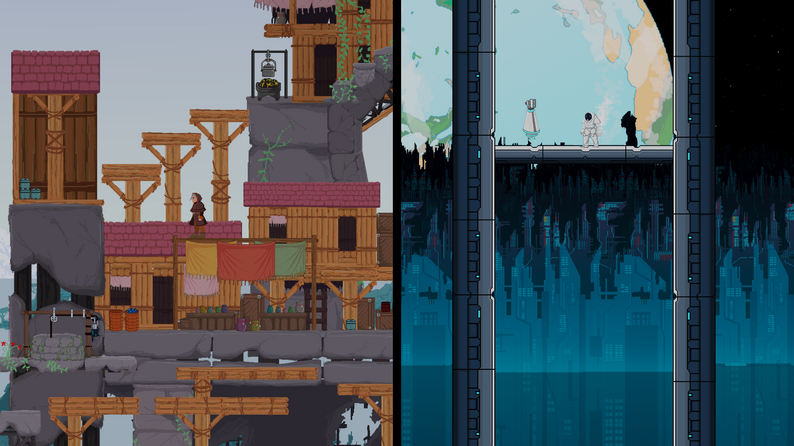
image from https://maizelongboat.itch.io/terra-nova
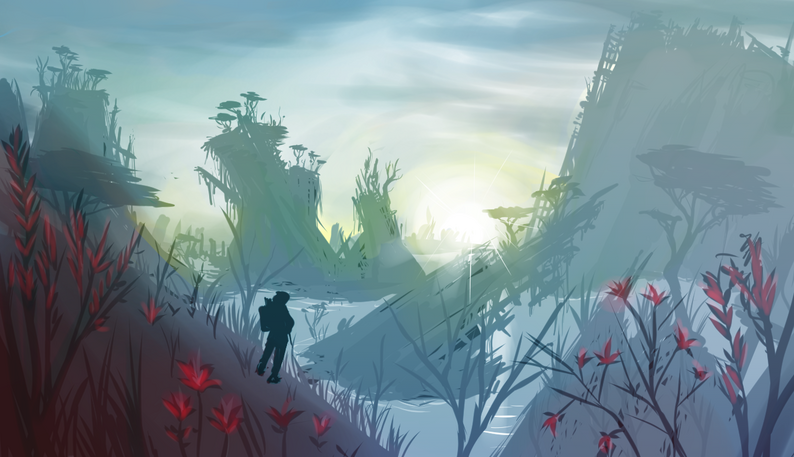
image from https://maizelongboat.itch.io/terra-nova
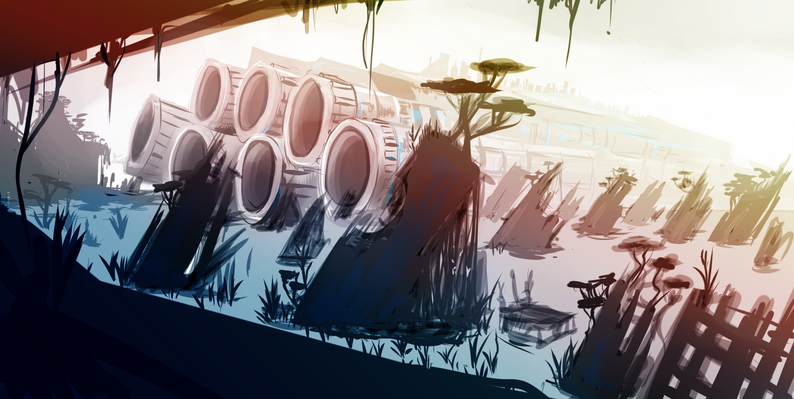
image from https://maizelongboat.itch.io/terra-nova
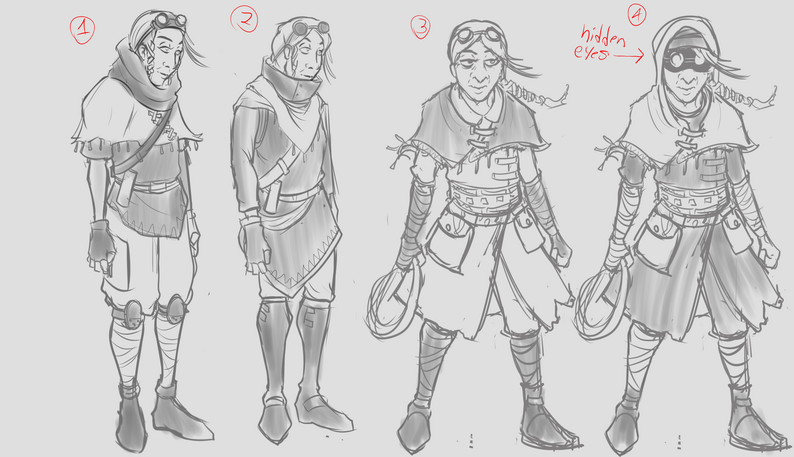
image from https://maizelongboat.itch.io/terra-nova
Set on Earth in the far distant future, this 2-player cooperative platformer explores what first contact between Indigenous and Settler peoples might look like thousands of years from now. (195) The game follows the stories of Terra, an Elder Earthborn landkeeper, and Nova, a youthful Starborn inventor as they explore their respective environments and interact with the people in their communities. Their two worlds collide after a mysterious spacecraft crash-lands in Earthborn territory and Terra is asked to investigate. Nova, in the meantime, is separated from the rest of his people and must navigate an alien world to find them. Players must explore unique environments and interact with interesting characters to uncover mysteries of the past.
2019, Maize Longboat, https://maizelongboat.itch.io/terra-nova
This work was created with Raymond Caplin (artist and animator), Mehrdad Dehdashti (technical director), and Beatrix Moersch (sound designer).

image from https://maizelongboat.itch.io/terra-nova
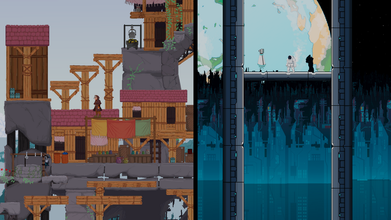
image from https://maizelongboat.itch.io/terra-nova
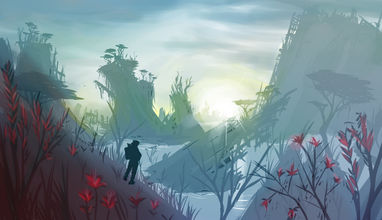
image from https://maizelongboat.itch.io/terra-nova
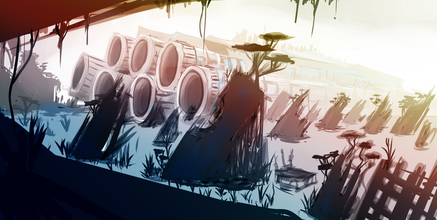
image from https://maizelongboat.itch.io/terra-nova
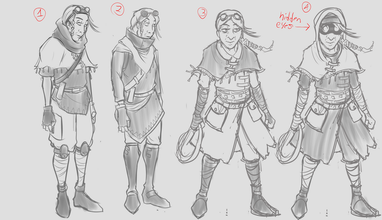
image from https://maizelongboat.itch.io/terra-nova
(748)
2019
Torrents of Sex
Nahee Kim
Algorithm 1: Partner (Peer) Selection Policy of Torrents of Sex
Begin […]
Repeat
Step 3: Every 2x minutes (Optimistic unchoke interval)
Step 3.1: If the local partner is in unsatisfied state: all interested remote partners are ordered with respect to their matching rate of sexual organs to the ones of local partner, and the two best-fit partners are unchoked. In other words, the two optimistic unchoke slots are assigned, one for each of the two best-fit partners. (653)
Step 3.2: Else if the local partner is in satisfied state: all interested remote partners are ordered according to the matching rate of sexual organs the local partner has to them and the two best-fit partners are unchoked. […]
Until everyone is satisfied.
End.
2019, Nahee Kim, https://nahee.app/torrents-of-sex.html
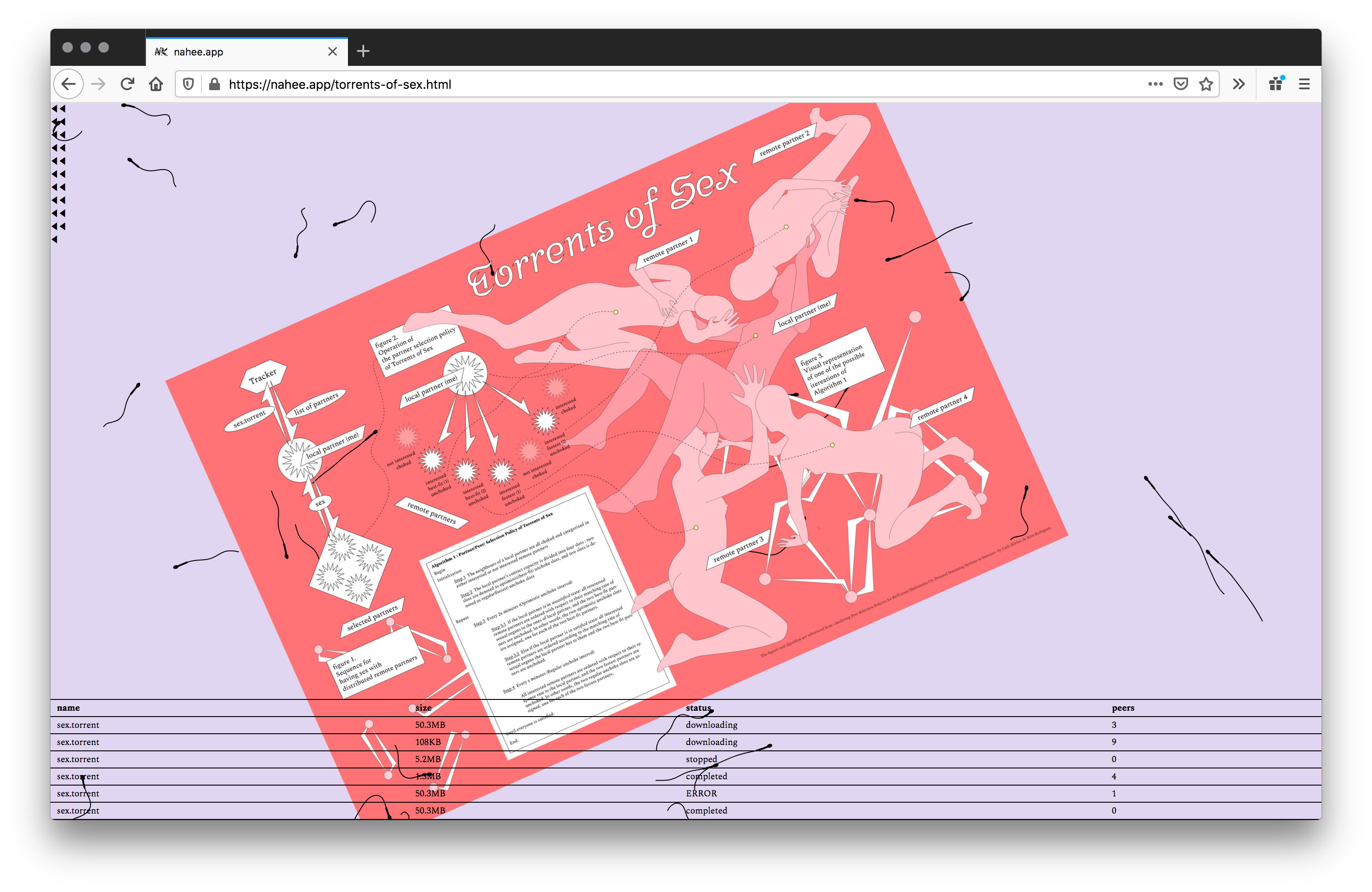
Screenshot, 2020, Firefox v76.0.1 on Mac OS 10.13.3; https://nahee.app/torrents-of-sex.html
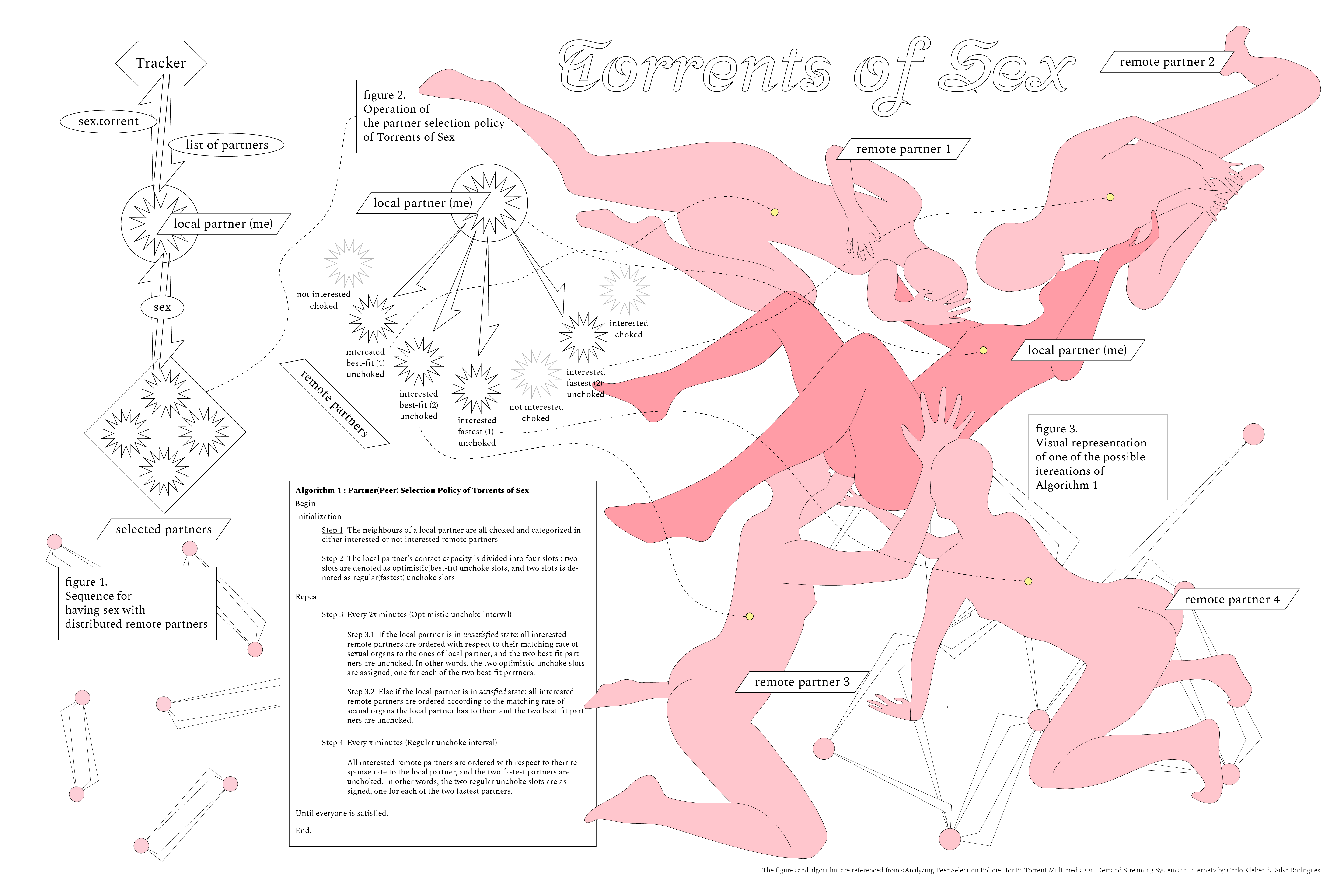
poster from https://nahee.app/web_transparency-02.png
Algorithm 1: Partner (Peer) Selection Policy of Torrents of Sex
Begin […]
Repeat
Step 3: Every 2x minutes (Optimistic unchoke interval)
Step 3.1: If the local partner is in unsatisfied state: all interested remote partners are ordered with respect to their matching rate of sexual organs to the ones of local partner, and the two best-fit partners are unchoked. In other words, the two optimistic unchoke slots are assigned, one for each of the two best-fit partners. (653)
Step 3.2: Else if the local partner is in satisfied state: all interested remote partners are ordered according to the matching rate of sexual organs the local partner has to them and the two best-fit partners are unchoked. […]
Until everyone is satisfied.
End.
2019, Nahee Kim, https://nahee.app/torrents-of-sex.html

Screenshot, 2020, Firefox v76.0.1 on Mac OS 10.13.3; https://nahee.app/torrents-of-sex.html
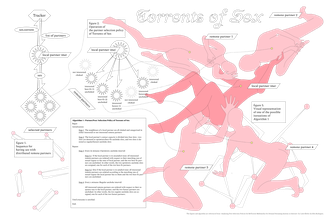
poster from https://nahee.app/web_transparency-02.png
(749)
2019
Handshake Erotica
Nahee Kim
client-server roleplaying in the context of peer-to-peer authentication
Client is the person who initiates the communication and most already know the server’s long-term public key.
Once the handshake is finished, the distinction between client-server disappears 1. Client hello 2. Server hello 3. Client authenticates 4. Server accepts 4-1. Server authenticates 4-2. Client accepts (560)
2019, Nahee Kim, https://nahee.app/handshake_erotica.html
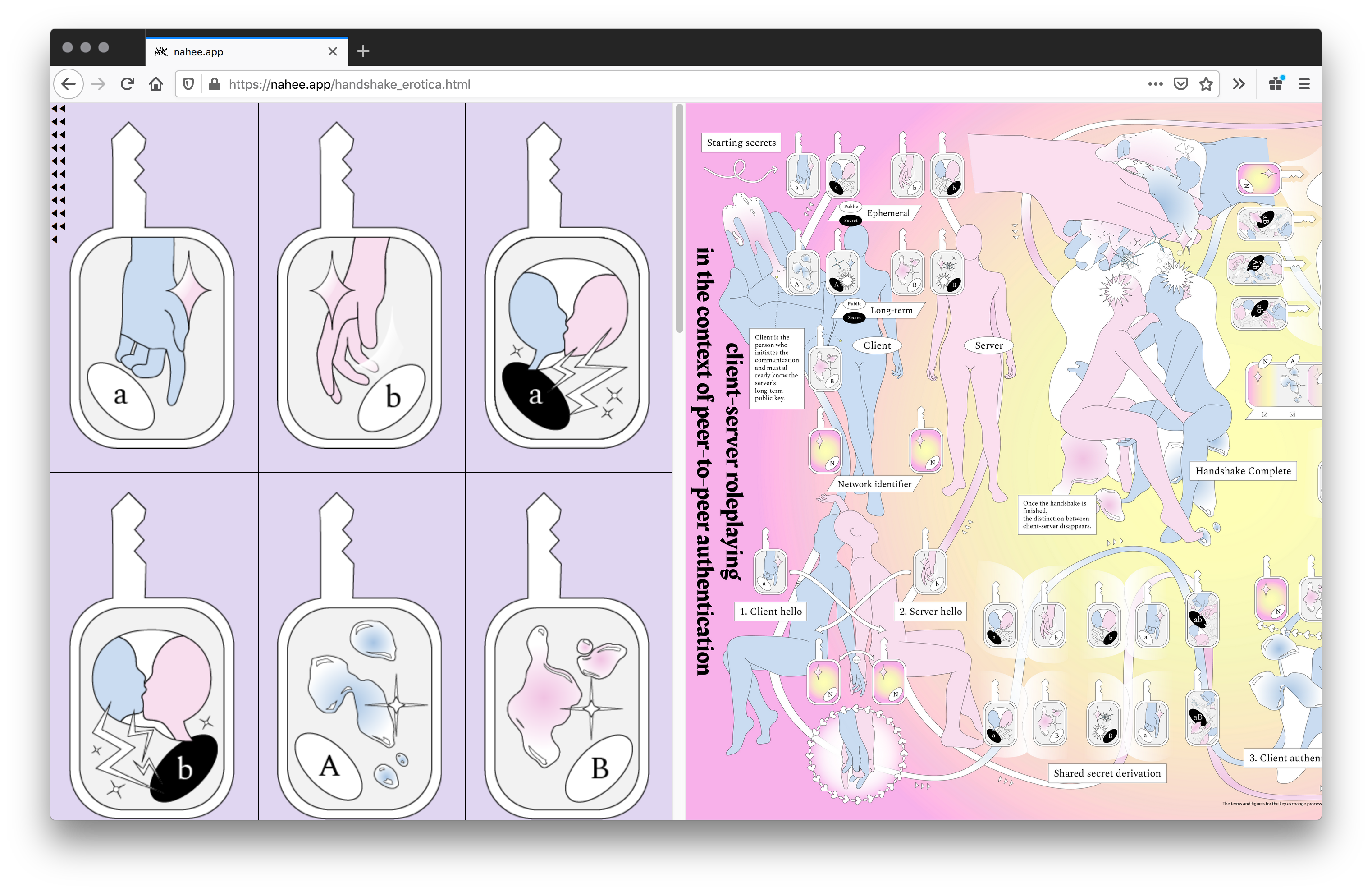
Screenshot, 2020, Firefox v76.0.1 on Mac OS 10.13.3; https://nahee.app/handshake_erotica.html

artifact from https://nahee.app/handshake_erotica.html
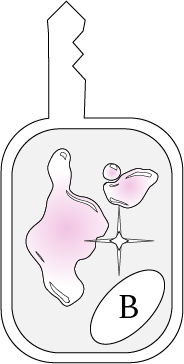
artifact from https://nahee.app/handshake_erotica.html
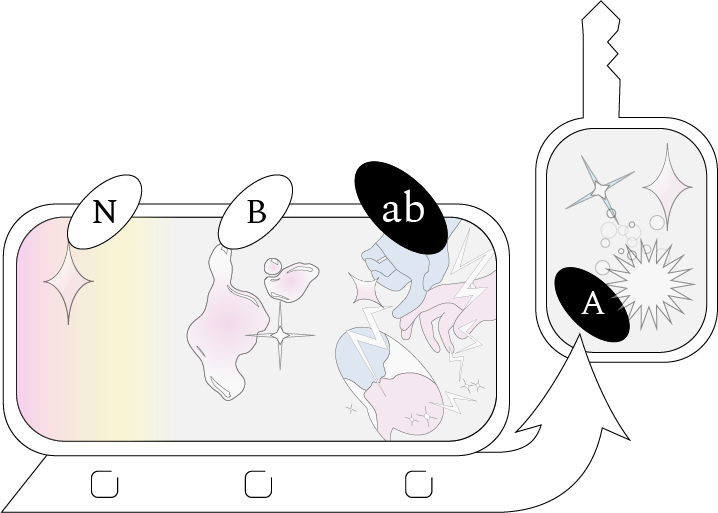
artifact from https://nahee.app/handshake_erotica.html
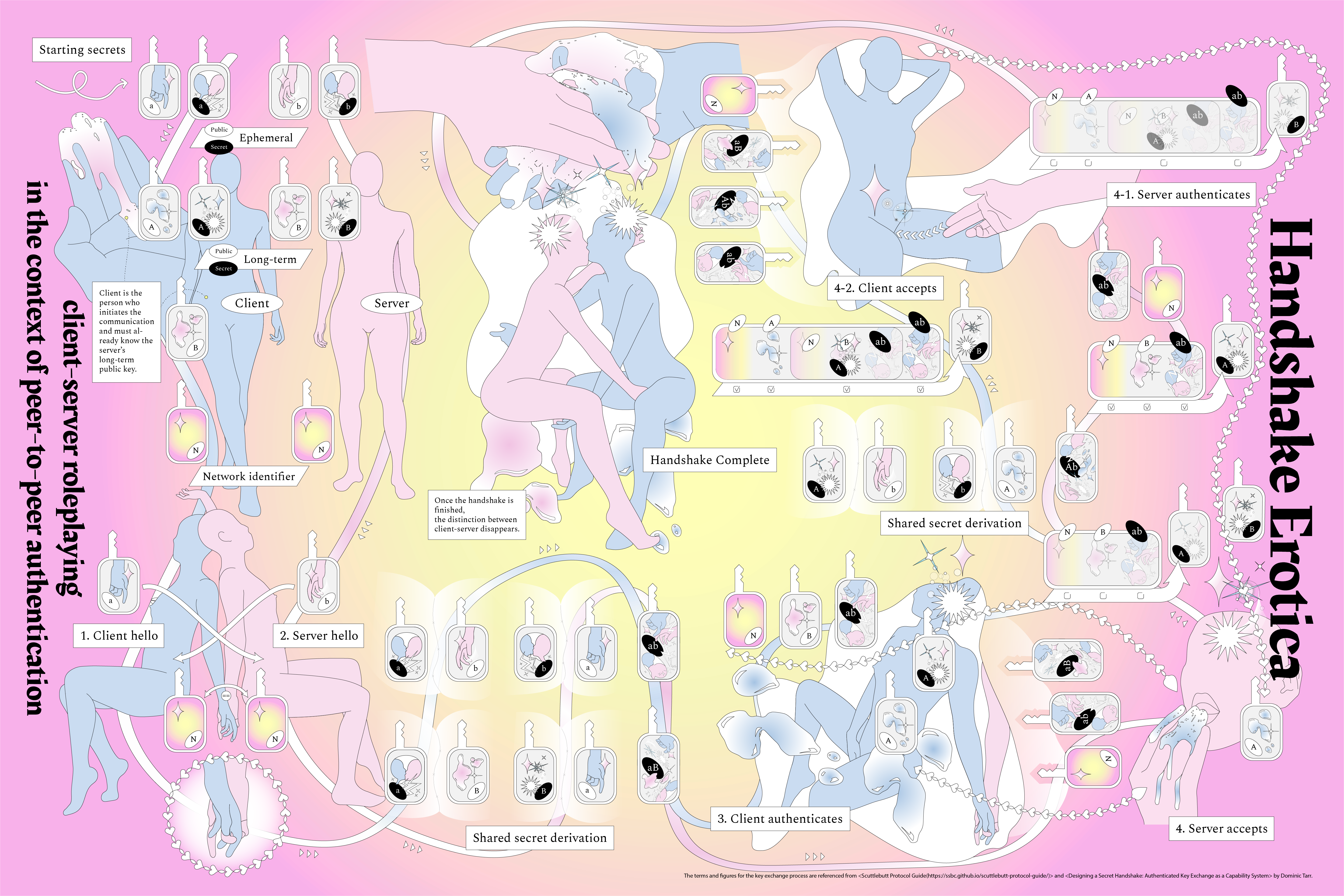
poster from https://nahee.app/handshake_erotica.png
client-server roleplaying in the context of peer-to-peer authentication
Client is the person who initiates the communication and most already know the server’s long-term public key.
Once the handshake is finished, the distinction between client-server disappears 1. Client hello 2. Server hello 3. Client authenticates 4. Server accepts 4-1. Server authenticates 4-2. Client accepts (560)
2019, Nahee Kim, https://nahee.app/handshake_erotica.html
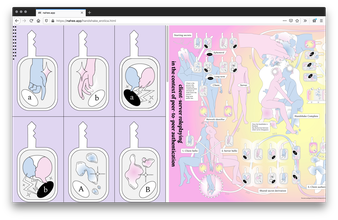
Screenshot, 2020, Firefox v76.0.1 on Mac OS 10.13.3; https://nahee.app/handshake_erotica.html

artifact from https://nahee.app/handshake_erotica.html

artifact from https://nahee.app/handshake_erotica.html
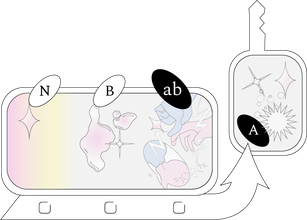
artifact from https://nahee.app/handshake_erotica.html
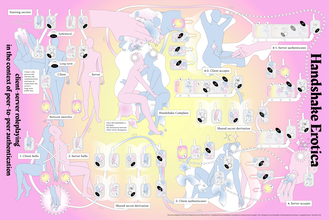
poster from https://nahee.app/handshake_erotica.png
(750)
2019
INDIGital
Alejandro Lakgaxixiwa Mayoral Baños
if (you can bead) {
you already know how to code();
} else if (you can play the drum) { (23)
you can code();
} else if (you can let your imagination drive you) {
you can code();
} else {
you can code();
}
INDIGital();
2019, Alejandro Lakgaxixiwa Mayoral Baños, https://www.indigenousfriends.org/indigital
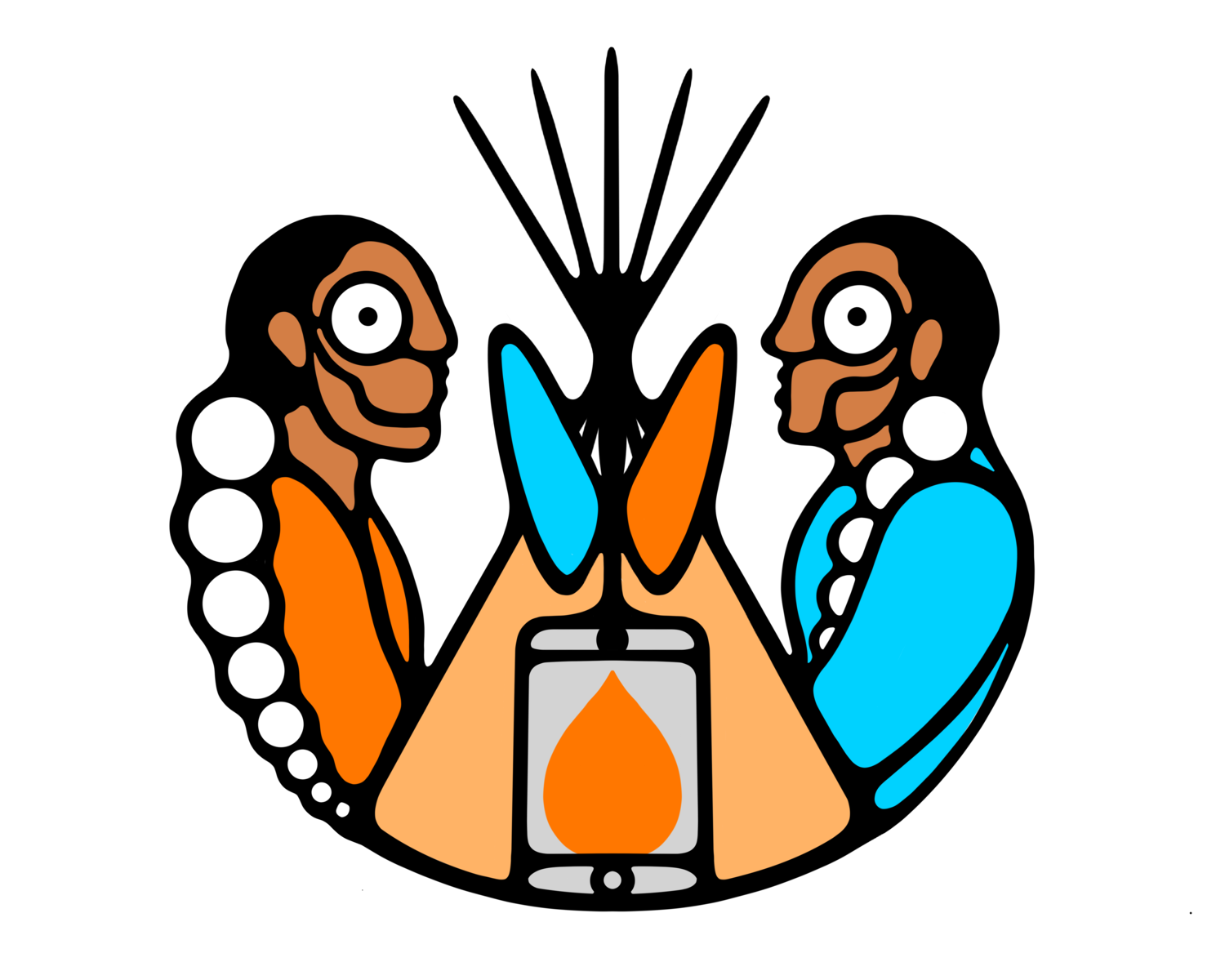
Indigenous Friends logo from https://www.indigenousfriends.org

INDIGital graphic from https://www.indigenousfriends.org/indigital

Screenshot, 2020, Firefox v76.0.1 on Mac OS 10.13.3; https://www.indigenousfriends.org/indigital
if (you can bead) {
you already know how to code();
} else if (you can play the drum) { (23)
you can code();
} else if (you can let your imagination drive you) {
you can code();
} else {
you can code();
}
INDIGital();
2019, Alejandro Lakgaxixiwa Mayoral Baños, https://www.indigenousfriends.org/indigital
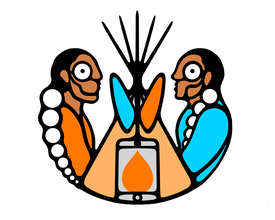
Indigenous Friends logo from https://www.indigenousfriends.org

INDIGital graphic from https://www.indigenousfriends.org/indigital
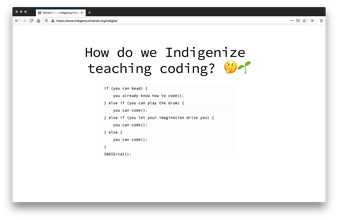
Screenshot, 2020, Firefox v76.0.1 on Mac OS 10.13.3; https://www.indigenousfriends.org/indigital
(751)
2019
Fuck the Soundcheck!
Dominique Pelletier, Constanza Piña, Gaia Leandra, Melissa Aguilar, Híbridas y Quimeras
AMIGUE,, ven a Fuck the soundcheck!, un espacio compartido para mujeres y disidencias que deseen aprender a instalar y probar el setup de sonido para su concierto. No tengas miedo, este es un espacio libre de violencia machista. Trae tus instrumentos electrónicos, cables, mixer, micrófonos y lo que tengas para tocar, compartir y despejar tus dudas sobre las cadenas audio y los sistemas de sonido. Finalizaremos nuestra jornada con una sesión de improvisación entre todxs que será grabada y transmitida por la radio. ¡No te quedes fuera, ven hacer noise con nosotrxs!
FRIEND, come to Fuck the soundcheck!, a shared space for women and dissidents who wish to learn how to install and test the sound setup for their concert. Do not be afraid, this is a space free of sexist violence. Bring your electronic instruments, cables, mixer, microphones and whatever you have to play, share and clear up your doubts about audio chains and sound systems. (415) We will end our day with an improvisation session between everyone that will be recorded and broadcast on the radio. Don’t stay out, come make noise with us!
2019, Dominique Pelletier, Constanza Piña (Corazón de Robota), Gaia Leandra, Melissa Aguilar, Híbridas y Quimeras (542) (gathering, Bâtiment 7, Montreal, QC, July 6, 2019); excerpt from Bâtiment 7, “Fuck the sound check!” Facebook event, July 6, 2019, https://www.facebook.com/events/354381621913015/?ref=newsfeed; referred by Constanza Piña (Corazón de Robota) and Melissa Aguilar (Cyborgrrrls) (x)
Mexico City

Fuck the Soundcheck!, image emailed from Melissa Aguilar
AMIGUE,, ven a Fuck the soundcheck!, un espacio compartido para mujeres y disidencias que deseen aprender a instalar y probar el setup de sonido para su concierto. No tengas miedo, este es un espacio libre de violencia machista. Trae tus instrumentos electrónicos, cables, mixer, micrófonos y lo que tengas para tocar, compartir y despejar tus dudas sobre las cadenas audio y los sistemas de sonido. Finalizaremos nuestra jornada con una sesión de improvisación entre todxs que será grabada y transmitida por la radio. ¡No te quedes fuera, ven hacer noise con nosotrxs!
FRIEND, come to Fuck the soundcheck!, a shared space for women and dissidents who wish to learn how to install and test the sound setup for their concert. Do not be afraid, this is a space free of sexist violence. Bring your electronic instruments, cables, mixer, microphones and whatever you have to play, share and clear up your doubts about audio chains and sound systems. (415) We will end our day with an improvisation session between everyone that will be recorded and broadcast on the radio. Don’t stay out, come make noise with us!
2019, Dominique Pelletier, Constanza Piña (Corazón de Robota), Gaia Leandra, Melissa Aguilar, Híbridas y Quimeras (542) (gathering, Bâtiment 7, Montreal, QC, July 6, 2019); excerpt from Bâtiment 7, “Fuck the sound check!” Facebook event, July 6, 2019, https://www.facebook.com/events/354381621913015/?ref=newsfeed; referred by Constanza Piña (Corazón de Robota) and Melissa Aguilar (Cyborgrrrls) (x)
Mexico City
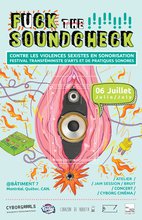
Fuck the Soundcheck!, image emailed from Melissa Aguilar
(752)
2019
CyborgCinema
Cyborgrrrls
Más de 20 colaboradoras internacionales nos llenarán la vista, oídos y mentes de imágenes reaccionarias, experimentales, y sonoras, donde el cuerpo se convierte en campo de juego para canalizar narrativas personales, reflexionar sobre territorios, política, ritos y contracultura. 113 minutos con 75 segundos de producción audiovisual sin censura servida en bandeja autogestiva. Las propuestas exploran temas como biohacking, electro colonialismo, rituales y hechiceria, posporno, surrealismo post apocaliptico, relaciones interespecies y animación experimental.
More than 20 international collaborators will fill our eyes, ears and minds with reactionary, experimental, and sound images, where the body becomes a playground to channel personal narratives, reflect on territories, politics, rituals and counterculture. 113 minutes and 75 seconds of uncensored audiovisual production served on a self-managing tray. The proposals explore themes such as biohacking, (477) electro colonialism, rituals and witchcraft, post-porn, (474) post-apocalyptic surrealism, interspecies relationships, and experimental animation.
2019, Cyborgrrrls, https://cyborgrrrls.wordpress.com/cyborg-cinema/; referred by Constanza Piña (Corazón de Robota) and Melissa Aguilar (x)
Mexico City

graphic sent by Melissa Aguilar, email subject: “info of cyborgcinema 2019” sent on 20200804
Más de 20 colaboradoras internacionales nos llenarán la vista, oídos y mentes de imágenes reaccionarias, experimentales, y sonoras, donde el cuerpo se convierte en campo de juego para canalizar narrativas personales, reflexionar sobre territorios, política, ritos y contracultura. 113 minutos con 75 segundos de producción audiovisual sin censura servida en bandeja autogestiva. Las propuestas exploran temas como biohacking, electro colonialismo, rituales y hechiceria, posporno, surrealismo post apocaliptico, relaciones interespecies y animación experimental.
More than 20 international collaborators will fill our eyes, ears and minds with reactionary, experimental, and sound images, where the body becomes a playground to channel personal narratives, reflect on territories, politics, rituals and counterculture. 113 minutes and 75 seconds of uncensored audiovisual production served on a self-managing tray. The proposals explore themes such as biohacking, (477) electro colonialism, rituals and witchcraft, post-porn, (474) post-apocalyptic surrealism, interspecies relationships, and experimental animation.
2019, Cyborgrrrls, https://cyborgrrrls.wordpress.com/cyborg-cinema/; referred by Constanza Piña (Corazón de Robota) and Melissa Aguilar (x)
Mexico City
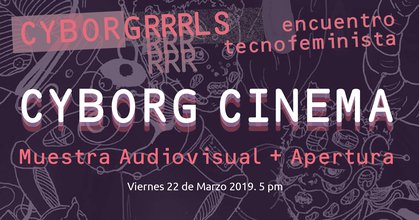
graphic sent by Melissa Aguilar, email subject: “info of cyborgcinema 2019” sent on 20200804
(753)
2019
Multiversidad Cyborg
Cyborgrrrls
a month long of Open workshops taught by womxn to learn, rethink and recreate our notions of technology, community and gender. from analog electronics, DIY animation, Digital security, to witchcraft, DIT gynecology (443) and much more.
2019, Cyborgrrrls (527), https://cyborgrrrls.wordpress.com/programa-2019/multi-versidad-cyborg/; excerpt from Melissa Aguilar, email to Mindy Seu, August, 4, 2020; referred by Constanza Piña (Corazón de Robota) and Melissa Aguilar (x)
Mexico City
a month long of Open workshops taught by womxn to learn, rethink and recreate our notions of technology, community and gender. from analog electronics, DIY animation, Digital security, to witchcraft, DIT gynecology (443) and much more.
2019, Cyborgrrrls (527), https://cyborgrrrls.wordpress.com/programa-2019/multi-versidad-cyborg/; excerpt from Melissa Aguilar, email to Mindy Seu, August, 4, 2020; referred by Constanza Piña (Corazón de Robota) and Melissa Aguilar (x)
Mexico City
(754)
2019
Radio Cosmica Libre
Hackie/Rosaura Rivera, Samantha Canchola, Melissa Aguilar, Mariana Reyna
A free, feminist, open, self-managed, nomad and itinerant radio that runs on free software. Radio Cósmica is a free internet radio (278) that showcases the underground musical and political scenes, focusing in Latin America. Radio Cósmica is part of the free radio network mensajito.mx and started broadcasting last december 2019 from a DIY device that uses Raspberry Pi and open software.
2019, Melissa Aguilar and Rosaura Rivera (Hackie), https://www.mixcloud.com/RadioCosmicaLibre/; excerpt from Melissa Aguilar, email to Mindy Seu, August 4, 2020; referred by Melissa Aguilar (Cyborgrrrls) (x)
https://radiocosmicalibre.org/
Mexico City

logo, designed by Melissa Aguilar, email subject “another possible project for the index”, sent on 20200805
A free, feminist, open, self-managed, nomad and itinerant radio that runs on free software. Radio Cósmica is a free internet radio (278) that showcases the underground musical and political scenes, focusing in Latin America. Radio Cósmica is part of the free radio network mensajito.mx and started broadcasting last december 2019 from a DIY device that uses Raspberry Pi and open software.
2019, Melissa Aguilar and Rosaura Rivera (Hackie), https://www.mixcloud.com/RadioCosmicaLibre/; excerpt from Melissa Aguilar, email to Mindy Seu, August 4, 2020; referred by Melissa Aguilar (Cyborgrrrls) (x)
https://radiocosmicalibre.org/
Mexico City

logo, designed by Melissa Aguilar, email subject “another possible project for the index”, sent on 20200805
(755)
2019
Taking from her the power she could not hold
Taina Cruz
“[Taina Cruz] is focusing on excavating relationships between Indigenous American (x) and West African material, ritual, and visual culture in the ‘modern’ Afro-Latinx experience.” —Taina Cruz, excerpt from Bio page
“Native American medicine (x) connects the mind, body, and spirit to the great mystery, and to all of life through nature. Fortunately we are still able to reforge the link between modern naturopathic medicine and the ritual ceremony and spiritual traditions of Native American medicine.” —video transcription 00:47
referred by Legacy Russell
https://vimeo.com/303951831 https://tainacruz.com/Taking-from-her-the-power-she-could-not-hold

cover image, https://tainacruz.com/Taking-from-her-the-power-she-could-not-hold
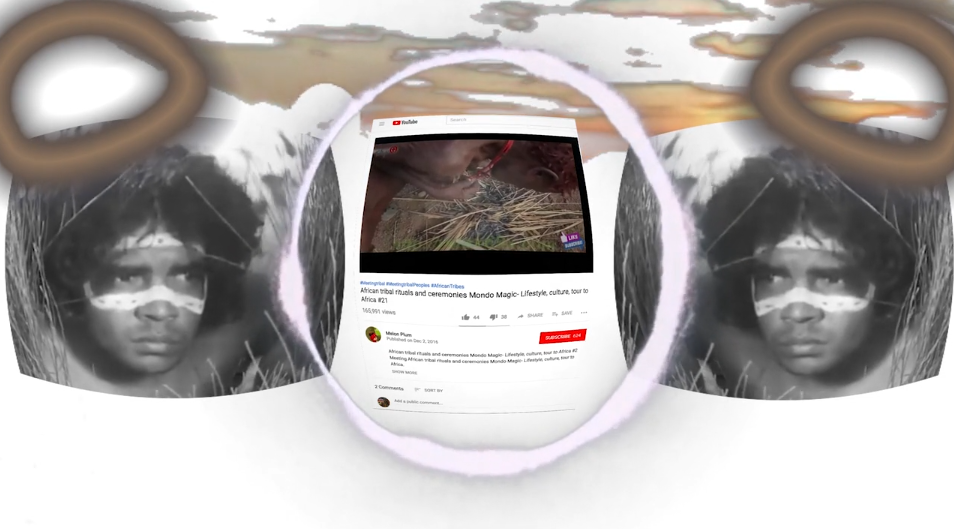
video still 00:19, https://vimeo.com/303951831
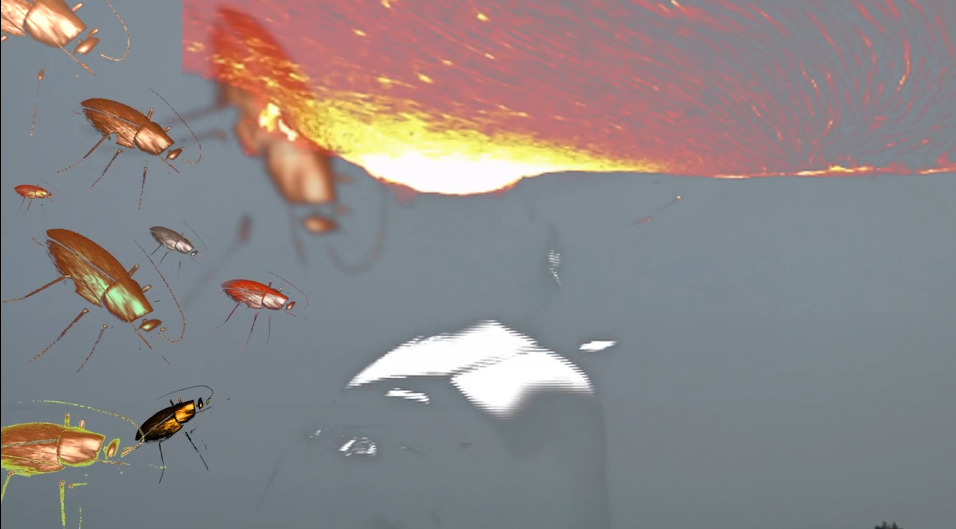
video still 00:25, https://vimeo.com/303951831
“[Taina Cruz] is focusing on excavating relationships between Indigenous American (x) and West African material, ritual, and visual culture in the ‘modern’ Afro-Latinx experience.” —Taina Cruz, excerpt from Bio page
“Native American medicine (x) connects the mind, body, and spirit to the great mystery, and to all of life through nature. Fortunately we are still able to reforge the link between modern naturopathic medicine and the ritual ceremony and spiritual traditions of Native American medicine.” —video transcription 00:47
referred by Legacy Russell
https://vimeo.com/303951831 https://tainacruz.com/Taking-from-her-the-power-she-could-not-hold
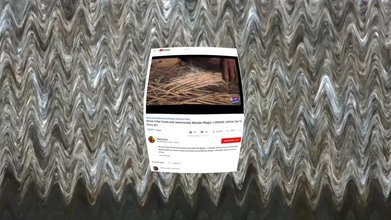
cover image, https://tainacruz.com/Taking-from-her-the-power-she-could-not-hold
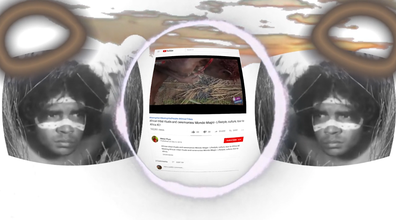
video still 00:19, https://vimeo.com/303951831
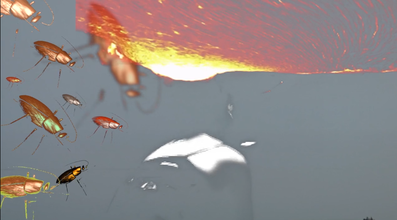
video still 00:25, https://vimeo.com/303951831
(756)
2019
Ama_zon@s
Samanta Garcia, Katerine Romero, Patricia Bernal
Somos un grupo de chicas que intenta visibilizar, celebrar y destacar el papel de la mujer en la escena de creación y uso detecnologías, las mujeres como protagonistas en el campo del descubrimiento y experimentación de nuevas dimensiones sonoras y visuales. Nos interesa el desarrollo de dispositivos que nos permitan interactuar con aparatos tecnológicos, pero también interactuar como cuerpos vivos, que pueden producir otras formas de comunicación, ayudándonos a demostrar lo que este puede producir en términos de conocimiento desde sí mismo y más allá de él, permitiéndonos conectarnos con otros mundos del conocimiento relacional. Queremos compartir este trabajo a través de la internet, somos un grupo de artistas-docentes no binarias interesadas en espacios como la internet, consideramos propuestas metodológicas como las del ciberfeminismo, en este sentido nos interesan escenarios virtuales y en red para intervenir desde nuestros proyectos y saberes.
We are a group of girls who try to make visible, celebrate and highlight the role of women in the creation and use of technologies, women as protagonists in the field of discovery and experimentation of new sound and visual dimensions. We are interested in the development of devices that allow us to interact with technological devices, but also interact as living bodies, which can produce other forms of communication, helping us to demonstrate what it can produce in terms of knowledge from itself and beyond it, allowing us to connect with other worlds of relational knowledge. We want to share this work through the internet, we are a group of non-binary artist-teachers interested in spaces such as the internet, we consider methodological proposals such as cyberfeminism. (154) In this sense we are interested in virtual and networked scenarios to intervene from our projects and knowledges.
2019, Samanta Garcia, Katerine Romero, and Patricia Bernal; referred by Constanza Piña (Corazón de Robota) and Melissa Aguilar (Cyborgrrrls) (x)
https://www.are.na/block/8375694
Bogotá, Colombia
Somos un grupo de chicas que intenta visibilizar, celebrar y destacar el papel de la mujer en la escena de creación y uso detecnologías, las mujeres como protagonistas en el campo del descubrimiento y experimentación de nuevas dimensiones sonoras y visuales. Nos interesa el desarrollo de dispositivos que nos permitan interactuar con aparatos tecnológicos, pero también interactuar como cuerpos vivos, que pueden producir otras formas de comunicación, ayudándonos a demostrar lo que este puede producir en términos de conocimiento desde sí mismo y más allá de él, permitiéndonos conectarnos con otros mundos del conocimiento relacional. Queremos compartir este trabajo a través de la internet, somos un grupo de artistas-docentes no binarias interesadas en espacios como la internet, consideramos propuestas metodológicas como las del ciberfeminismo, en este sentido nos interesan escenarios virtuales y en red para intervenir desde nuestros proyectos y saberes.
We are a group of girls who try to make visible, celebrate and highlight the role of women in the creation and use of technologies, women as protagonists in the field of discovery and experimentation of new sound and visual dimensions. We are interested in the development of devices that allow us to interact with technological devices, but also interact as living bodies, which can produce other forms of communication, helping us to demonstrate what it can produce in terms of knowledge from itself and beyond it, allowing us to connect with other worlds of relational knowledge. We want to share this work through the internet, we are a group of non-binary artist-teachers interested in spaces such as the internet, we consider methodological proposals such as cyberfeminism. (154) In this sense we are interested in virtual and networked scenarios to intervene from our projects and knowledges.
2019, Samanta Garcia, Katerine Romero, and Patricia Bernal; referred by Constanza Piña (Corazón de Robota) and Melissa Aguilar (Cyborgrrrls) (x)
https://www.are.na/block/8375694
Bogotá, Colombia
(757)
2019
Descuartizadora [Ripper]
MESTIZA DEL COÑO SUR, CARNE DE UN COÑO QUE EXPELE VERBORREAS, CONSEVIDA POR MUERTE Y DESGRACIA DE LA COLONIZACION REPRESENTO EN CARNE VIVA UNA VIOLACION SISTEMATICA ANSESTRAL. NO SIENTO ORGULLO, PUES NACI LLENA DE PREJUICIOS.
TIERRA DE NADIE. NADIE EN LA TIERRA. DENTRO DE LOS CAPITULO DE ESTA HISTORIA UNIVERSAL,SOLO VIVO EL ESPIRAL DE LA HISTERIA SOCIAL CONSTANTE.
MESTIZA OF THE SOUTHERN PUSSY, MEAT OF A PUSSY THAT EXPELS VERBORRHAS, CONSERVED BY DEATH AND DISGUST OF THE COLONIZATION REPRESENTING AN ANCESTRAL SYSTEMATIC VIOLATION IN LIVE MEAT. I DO NOT FEEL PRIDE, BECAUSE I WAS BORN FULL OF PREJUDICES.
NO MAN’S LAND. (95) NOBODY ON EARTH. INSIDE THE CHAPTERS OF THIS UNIVERSAL HISTORY, ONLY THE SPIRAL OF CONSTANT SOCIAL HISTORY LIVE.
2019, https://descuartizadora.info/; excerpt from Carne de Mestiza, “Descuartizadora,” p. 3, https://www.descuartizadora.info/zine/descuartizadora-01.pdf; referred by Klau Chinche (Klau Kinky)
referred by Klau Kinky
https://www.are.na/block/8513086
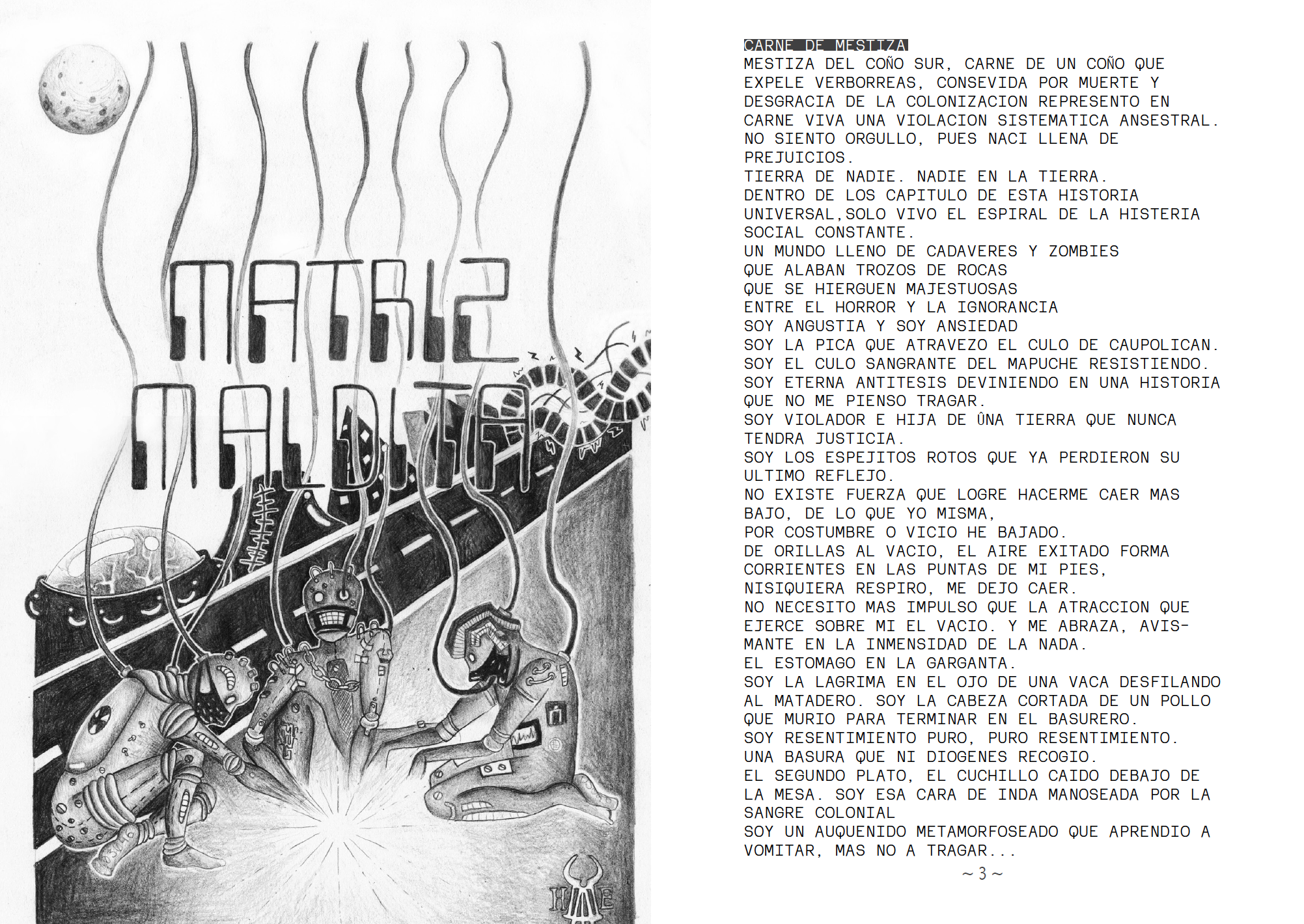
pages 2–3
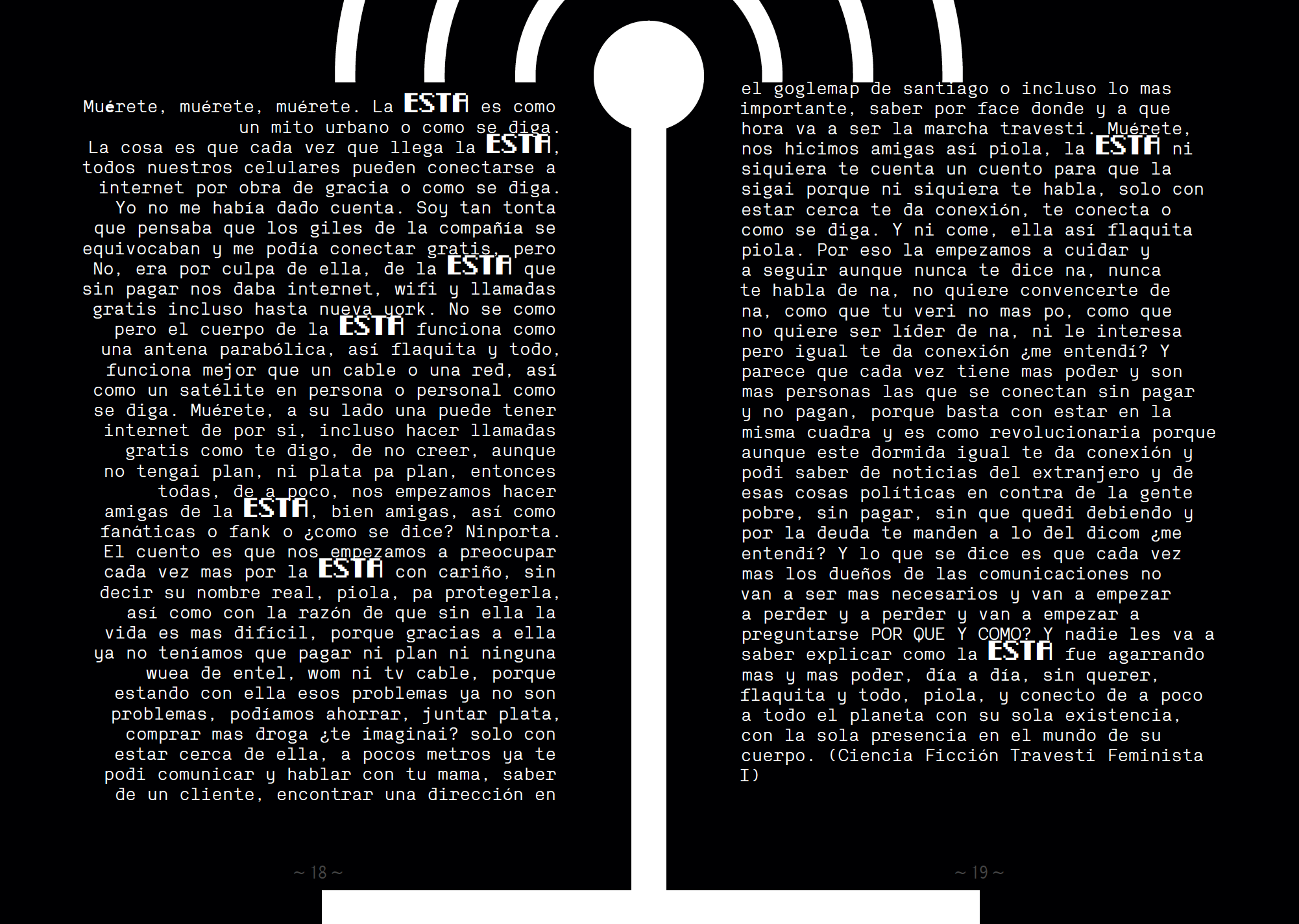
pages 18–19
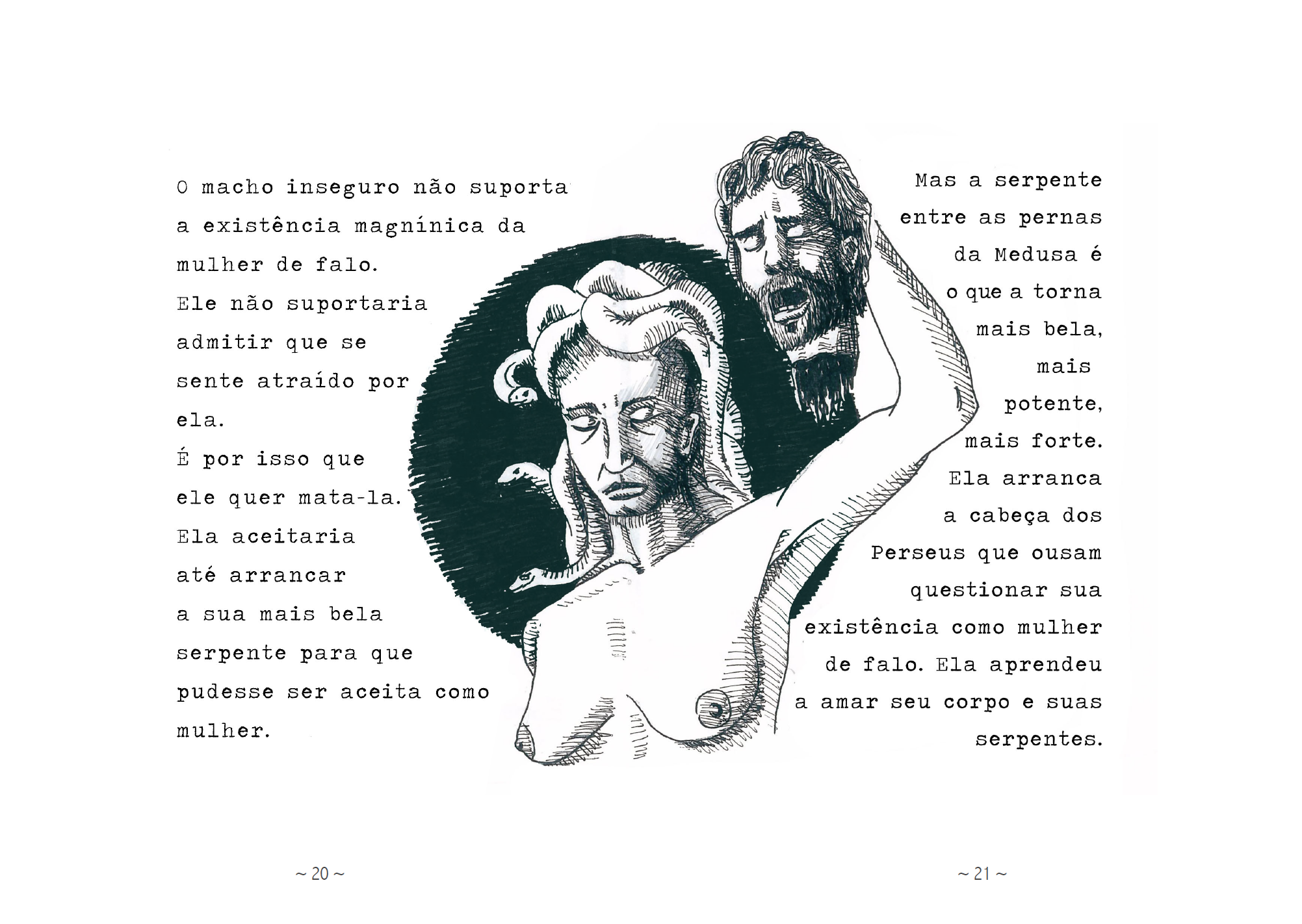
pages 20–21
MESTIZA DEL COÑO SUR, CARNE DE UN COÑO QUE EXPELE VERBORREAS, CONSEVIDA POR MUERTE Y DESGRACIA DE LA COLONIZACION REPRESENTO EN CARNE VIVA UNA VIOLACION SISTEMATICA ANSESTRAL. NO SIENTO ORGULLO, PUES NACI LLENA DE PREJUICIOS.
TIERRA DE NADIE. NADIE EN LA TIERRA. DENTRO DE LOS CAPITULO DE ESTA HISTORIA UNIVERSAL,SOLO VIVO EL ESPIRAL DE LA HISTERIA SOCIAL CONSTANTE.
MESTIZA OF THE SOUTHERN PUSSY, MEAT OF A PUSSY THAT EXPELS VERBORRHAS, CONSERVED BY DEATH AND DISGUST OF THE COLONIZATION REPRESENTING AN ANCESTRAL SYSTEMATIC VIOLATION IN LIVE MEAT. I DO NOT FEEL PRIDE, BECAUSE I WAS BORN FULL OF PREJUDICES.
NO MAN’S LAND. (95) NOBODY ON EARTH. INSIDE THE CHAPTERS OF THIS UNIVERSAL HISTORY, ONLY THE SPIRAL OF CONSTANT SOCIAL HISTORY LIVE.
2019, https://descuartizadora.info/; excerpt from Carne de Mestiza, “Descuartizadora,” p. 3, https://www.descuartizadora.info/zine/descuartizadora-01.pdf; referred by Klau Chinche (Klau Kinky)
referred by Klau Kinky
https://www.are.na/block/8513086
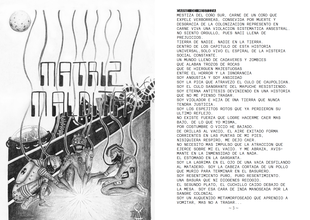
pages 2–3
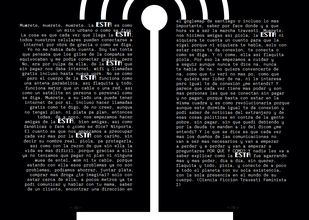
pages 18–19
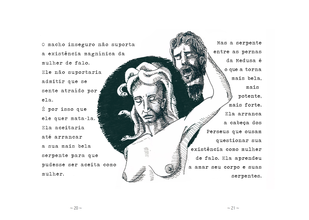
pages 20–21
(758)
2019
We Cast a Shadow
Maurice Carlos Ruffin
“‘You can be beautiful, even more beautiful than before.’ This is the seductive promise of Dr. Nzinga’s clinic, where anyone can get their lips thinned, their skin bleached, and their nose narrowed. A complete demelanization will liberate you from the confines of being born in a black body—if you can afford it.
In this near-future [page "Octavia’s Brood" not found] Southern city plagued by fenced-in ghettos and police violence, more and more residents are turning to this experimental medical procedure. Like any father, our narrator just wants the best for his son, Nigel, a biracial boy whose black birthmark is getting bigger by the day. The darker Nigel becomes, the more frightened his father feels. But how far will he go to protect his son? And will he destroy his family in the process?.” —summary by the publisher One World
referred by Refresh Tech
https://www.oneworldlit.com/books/we-cast-a-shadow-tr/we-cast-a-shadow-hc
“‘You can be beautiful, even more beautiful than before.’ This is the seductive promise of Dr. Nzinga’s clinic, where anyone can get their lips thinned, their skin bleached, and their nose narrowed. A complete demelanization will liberate you from the confines of being born in a black body—if you can afford it.
In this near-future [page "Octavia’s Brood" not found] Southern city plagued by fenced-in ghettos and police violence, more and more residents are turning to this experimental medical procedure. Like any father, our narrator just wants the best for his son, Nigel, a biracial boy whose black birthmark is getting bigger by the day. The darker Nigel becomes, the more frightened his father feels. But how far will he go to protect his son? And will he destroy his family in the process?.” —summary by the publisher One World
referred by Refresh Tech
https://www.oneworldlit.com/books/we-cast-a-shadow-tr/we-cast-a-shadow-hc
(759)
2019
Ev3ryd4y Cyb0rg TV (ECtv)
Lee Blalock
Ev3ryd4y Cyb0rg TV is a project that allows me to make robust electronic pieces while avoiding any IRL performances of them. (294) There is no physical set or special preparation in the season one episodes. These are simply shot in my apartment as part of my regular routine. Low budget, low maintenance, real augmentations.
2019, Lee Blalock, https://leeblalock.com/tv.html; referred by Refresh Tech
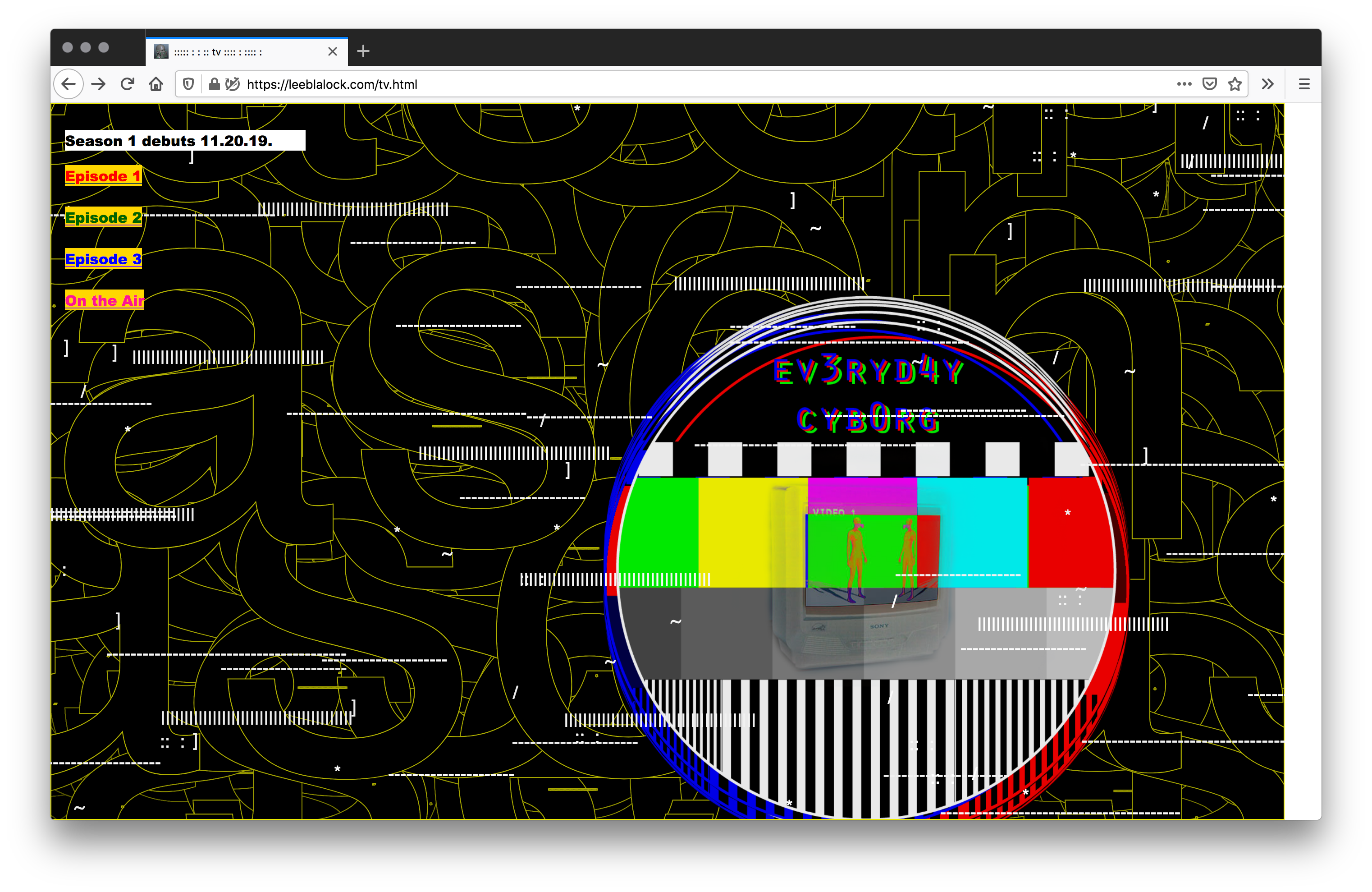
Screenshot, 2020, Firefox v76.0.1 on Mac OS 10.13.3; https://leeblalock.com/tv.html

Screenshot, 2020, Firefox v76.0.1 on Mac OS 10.13.3; https://leeblalock.com/s1e2.html
Ev3ryd4y Cyb0rg TV is a project that allows me to make robust electronic pieces while avoiding any IRL performances of them. (294) There is no physical set or special preparation in the season one episodes. These are simply shot in my apartment as part of my regular routine. Low budget, low maintenance, real augmentations.
2019, Lee Blalock, https://leeblalock.com/tv.html; referred by Refresh Tech
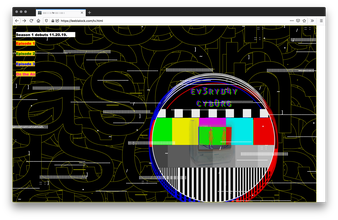
Screenshot, 2020, Firefox v76.0.1 on Mac OS 10.13.3; https://leeblalock.com/tv.html
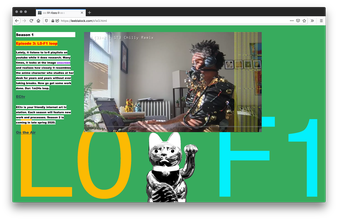
Screenshot, 2020, Firefox v76.0.1 on Mac OS 10.13.3; https://leeblalock.com/s1e2.html
(760)
2019
Africanfuturism Defined
Nnedimma Nkemdili Okorafor (Nnedi Okorafor)
I am an Africanfuturist and an Africanjujuist. Africanfuturism is a subcategory of science fiction. Africanjujuism is a subcategory of fantasy that respectfully acknowledges the seamless blend of true existing African spiritualities and cosmologies with the imaginative. […]
Africanfuturism is similar to “Afrofuturism” (386) in the way that blacks on the continent and in the Black Diaspora are all connected by blood, spirit, history and future. The difference is that Africanfuturism is specifically and more directly rooted in African culture, history, mythology and point-of-view as it then branches into the Black Diaspora, and it does not privilege or center the West.
Africanfuturism is concerned with visions of the future, is interested in technology, leaves the earth, skews optimistic, is centered on and predominantly written by people of African descent (black people) and it is rooted first and foremost in Africa. It’s less concerned with “what could have been” and more concerned with “what is and can/will be.” It acknowledges, grapples with and carries “what has been.”
2019, Nnedimma (Nnedi) Nkemdili Okorafor, http://nnedi.blogspot.com/2019/10/africanfuturism-defined.html; submitted by Jessica FitzPatrick
I am an Africanfuturist and an Africanjujuist. Africanfuturism is a subcategory of science fiction. Africanjujuism is a subcategory of fantasy that respectfully acknowledges the seamless blend of true existing African spiritualities and cosmologies with the imaginative. […]
Africanfuturism is similar to “Afrofuturism” (386) in the way that blacks on the continent and in the Black Diaspora are all connected by blood, spirit, history and future. The difference is that Africanfuturism is specifically and more directly rooted in African culture, history, mythology and point-of-view as it then branches into the Black Diaspora, and it does not privilege or center the West.
Africanfuturism is concerned with visions of the future, is interested in technology, leaves the earth, skews optimistic, is centered on and predominantly written by people of African descent (black people) and it is rooted first and foremost in Africa. It’s less concerned with “what could have been” and more concerned with “what is and can/will be.” It acknowledges, grapples with and carries “what has been.”
2019, Nnedimma (Nnedi) Nkemdili Okorafor, http://nnedi.blogspot.com/2019/10/africanfuturism-defined.html; submitted by Jessica FitzPatrick
(761)
2019
Intimate Connections Research Centre (INCO)
Yozhi Stolet, Lika Kareva
entanglement site CYBERFEMZINE-X. (605) X speaks of our current attachment to the unknown, and entanglement is our unstable ontology. CFZ-X is composed of voids. emptiness is its pulsating matter: inconsistent pages, random transitions, indecent places—in the moments of our background waiting, she arbitrarily confuses materials. The process is triggered by her alien desire.
2019, Yozhi Stolet, Lika Kareva, Maailmanloppu, Ilya Dolgov, Dasha Yuriychuk, German Lavrovsky, Nasty Shit, and others (porous boundaries), https://cyberfemzine.net/; excerpt from Yozhi Stolet [Йожи Столет], email to Mindy Seu, May 20, 2021
entanglement site CYBERFEMZINE-X. (605) X speaks of our current attachment to the unknown, and entanglement is our unstable ontology. CFZ-X is composed of voids. emptiness is its pulsating matter: inconsistent pages, random transitions, indecent places—in the moments of our background waiting, she arbitrarily confuses materials. The process is triggered by her alien desire.
2019, Yozhi Stolet, Lika Kareva, Maailmanloppu, Ilya Dolgov, Dasha Yuriychuk, German Lavrovsky, Nasty Shit, and others (porous boundaries), https://cyberfemzine.net/; excerpt from Yozhi Stolet [Йожи Столет], email to Mindy Seu, May 20, 2021
(762)
2019
¿Territorio internet? Espacios, afectividades y comunidades [Internet Territory? Spaces, Affections and Communities]
la jes
Alguien dijo alguna vez que necesitamos aprender a usar las tecnologías tanto como hemos aprendido a leer y escribir. Defender internet como territorio implica generar sociabilidades presentes, conscientes, críticas. Seguir usando la red, pero de formas que nos sean beneficiosas, amorosas, compartidas sin seguir únicamente ‘reglas’ impuestas por plataformas que no nos representan. Defender Internet es sumarnos a los grupos de “competentes literatos digitales que puedan estar a la altura de las difíciles circunstancias que presumiblemente nos tocará vivir”. (694) Defender Internet como territorio nos ayuda a tomar decisiones.
Someone once said that we need to learn to use technologies as much as we have learned to read and write. Defending the internet as a territory implies generating sociability present, conscious, critical. Continue using the network, but in ways that are beneficial to us, love, shared without following only “rules” imposed by platforms that do not represent. To defend the Internet is to join the groups of “competent digital writers who may be at the height of the difficult circumstances that presumably we will have to live.” Defending the Internet as a territory helps us make decisions.
2019, la_jes, https://sursiendo.org/docs/territorio-internet_espacios-afectividades-comunidades.pdf; submitted by Paola Ricaurte
Alguien dijo alguna vez que necesitamos aprender a usar las tecnologías tanto como hemos aprendido a leer y escribir. Defender internet como territorio implica generar sociabilidades presentes, conscientes, críticas. Seguir usando la red, pero de formas que nos sean beneficiosas, amorosas, compartidas sin seguir únicamente ‘reglas’ impuestas por plataformas que no nos representan. Defender Internet es sumarnos a los grupos de “competentes literatos digitales que puedan estar a la altura de las difíciles circunstancias que presumiblemente nos tocará vivir”. (694) Defender Internet como territorio nos ayuda a tomar decisiones.
Someone once said that we need to learn to use technologies as much as we have learned to read and write. Defending the internet as a territory implies generating sociability present, conscious, critical. Continue using the network, but in ways that are beneficial to us, love, shared without following only “rules” imposed by platforms that do not represent. To defend the Internet is to join the groups of “competent digital writers who may be at the height of the difficult circumstances that presumably we will have to live.” Defending the Internet as a territory helps us make decisions.
2019, la_jes, https://sursiendo.org/docs/territorio-internet_espacios-afectividades-comunidades.pdf; submitted by Paola Ricaurte
(763)
2019
Feminist Data Manifest-No
Marika Cifor, Patricia Garcia, TL Cowan, Jasmine Rault, Tonia Sutherland, Anita Say Chan, Jennifer Rode, Anna Lauren Hoffmann, Niloufar Salehi, Lisa Nakamura
We refuse to operate under the assumption that risk and harm associated with data practices can be bounded to mean the same thing for everyone, everywhere, at every time. We commit to acknowledging how historical and systemic patterns of violence and exploitation produce differential vulnerabilities for communities. (528) […] We refuse reductionist practices that view people as data points in order to embrace the whole person. We commit to the requirement of recognizing personhood as a feminist data value. […]
Our refusals and commitments together demand that data be acknowledged as at once an interpretation and in need of interpretation. Data can be a check-in, a story, an experience or set of experiences, and a resource to begin and continue dialogue. It can—and should always—resist reduction. Data is a thing, a process, and a relationship we make and put to use. We can make it and use it differently.
2019, Marika Cifor, Patricia Garcia, TL Cowan, Jasmine Rault, Tonia Sutherland, Anita Say Chan, Jennifer Rode, Anna Lauren Hoffmann, Niloufar Salehi, and Lisa Nakamura, http://manifestno.com; submitted by Anna Lauren Hoffmann
We refuse to operate under the assumption that risk and harm associated with data practices can be bounded to mean the same thing for everyone, everywhere, at every time. We commit to acknowledging how historical and systemic patterns of violence and exploitation produce differential vulnerabilities for communities. (528) […] We refuse reductionist practices that view people as data points in order to embrace the whole person. We commit to the requirement of recognizing personhood as a feminist data value. […]
Our refusals and commitments together demand that data be acknowledged as at once an interpretation and in need of interpretation. Data can be a check-in, a story, an experience or set of experiences, and a resource to begin and continue dialogue. It can—and should always—resist reduction. Data is a thing, a process, and a relationship we make and put to use. We can make it and use it differently.
2019, Marika Cifor, Patricia Garcia, TL Cowan, Jasmine Rault, Tonia Sutherland, Anita Say Chan, Jennifer Rode, Anna Lauren Hoffmann, Niloufar Salehi, and Lisa Nakamura, http://manifestno.com; submitted by Anna Lauren Hoffmann
(764)
2019
Computer Grrrls Timeline
Marie Lechner, Inke Arns, Nicolas Couturier Sarah Garcin
Les femmes ont historiquement travaillé avec des machines, qu’elles soient dactylos, télégraphistes, opératrices de téléphonie, mécanographes, programmeuses. Elles ont souvent constitué une avant-garde temporaire dans le développement de technologies novatrices, avant d’être remplacées par les machines qui ont pris leur nom. Le terme “computer”, bien avant qu’il ne désigne l’ordinateur, qualifiait la personne, souvent une femme, qui faisait les calculs à la main. Aux débuts de l’informatique, elles étaient très présentes, tant dans le domaine des cartes perforées que dans les départements scientifiques. Mais leur présence s’amenuise considérablement dès le milieu des années 1980, un phénomène sans précédent dans l’histoire d’une profession. Dans les années 1990, les cyberféministes ont appelé les femmes à réinvestir le champ des technologies à l’heure d’internet. Aujourd’hui, les initiatives se multiplient pour remédier à ce déséquilibre.
Women have historically worked with machines, whether they are typists, telegraphists, telephone operators, mechanographers, programmers. (359) They were often a temporary vanguard in the development of innovative technologies, before being replaced by the machines that took their name. The term “computer,” long before it referred to the computer, referred to the person, often a woman, who did the calculations by hand. In the early days of computing, they were very present, both in the field of punched cards and in scientific departments. But their presence dwindled considerably by the mid-1980s, a phenomenon unprecedented in the history of a profession. In the 1990s, cyberfeminists called on women to reinvest in technology in the internet age. Today, initiatives are multiplying to remedy this imbalance.
2019, Marie Lechner, Inke Arns, Nicolas Couturier, and Sarah Garcin, http://computer-grrrls.gaite-lyrique.net/; submitted by @inthedadabase
Les femmes ont historiquement travaillé avec des machines, qu’elles soient dactylos, télégraphistes, opératrices de téléphonie, mécanographes, programmeuses. Elles ont souvent constitué une avant-garde temporaire dans le développement de technologies novatrices, avant d’être remplacées par les machines qui ont pris leur nom. Le terme “computer”, bien avant qu’il ne désigne l’ordinateur, qualifiait la personne, souvent une femme, qui faisait les calculs à la main. Aux débuts de l’informatique, elles étaient très présentes, tant dans le domaine des cartes perforées que dans les départements scientifiques. Mais leur présence s’amenuise considérablement dès le milieu des années 1980, un phénomène sans précédent dans l’histoire d’une profession. Dans les années 1990, les cyberféministes ont appelé les femmes à réinvestir le champ des technologies à l’heure d’internet. Aujourd’hui, les initiatives se multiplient pour remédier à ce déséquilibre.
Women have historically worked with machines, whether they are typists, telegraphists, telephone operators, mechanographers, programmers. (359) They were often a temporary vanguard in the development of innovative technologies, before being replaced by the machines that took their name. The term “computer,” long before it referred to the computer, referred to the person, often a woman, who did the calculations by hand. In the early days of computing, they were very present, both in the field of punched cards and in scientific departments. But their presence dwindled considerably by the mid-1980s, a phenomenon unprecedented in the history of a profession. In the 1990s, cyberfeminists called on women to reinvest in technology in the internet age. Today, initiatives are multiplying to remedy this imbalance.
2019, Marie Lechner, Inke Arns, Nicolas Couturier, and Sarah Garcin, http://computer-grrrls.gaite-lyrique.net/; submitted by @inthedadabase
(765)
2019
W21
Valeria Facchin, Delanie Joy Linden, Indrani Saha
What does it mean to be a woman in the 21st Century? W21 is a data-feminist participatory research platform focusing on post-feminism and intersectional practice in art, science, culture, and technology. We aim to map feminist practice and to write a collaborative manifesto for the digital era, with deep considerations of gender, class or race.
W21 questions the patriarchal system of knowledge and construction of power. To do so, we use data science from a feminist perspective. As Catherine D’Ignazio and Lauren F. Klein (685) frame it: “The narratives around big data and data science are overwhelmingly white, male, and techno-heroic. Data Feminism offers strategies for data scientists to learn how feminism can help work toward justice, and for feminists who want to focus their efforts on the growing field of data science. Data Feminism is about much more than gender. It is about power, about who has it and who doesn't and about how those differentials of power can be challenged and changed.”
2019, Valeria Facchin, Delanie Joy Linden, and Indrani Saha, https://www.women21stcentury.com/
What does it mean to be a woman in the 21st Century? W21 is a data-feminist participatory research platform focusing on post-feminism and intersectional practice in art, science, culture, and technology. We aim to map feminist practice and to write a collaborative manifesto for the digital era, with deep considerations of gender, class or race.
W21 questions the patriarchal system of knowledge and construction of power. To do so, we use data science from a feminist perspective. As Catherine D’Ignazio and Lauren F. Klein (685) frame it: “The narratives around big data and data science are overwhelmingly white, male, and techno-heroic. Data Feminism offers strategies for data scientists to learn how feminism can help work toward justice, and for feminists who want to focus their efforts on the growing field of data science. Data Feminism is about much more than gender. It is about power, about who has it and who doesn't and about how those differentials of power can be challenged and changed.”
2019, Valeria Facchin, Delanie Joy Linden, and Indrani Saha, https://www.women21stcentury.com/
(766)
2019
Transcode Manifesto
Chelsea Thompto
Transcode is numerously trans, meaning it enacts and explores trans in its, subjects, methods, themes, and forms.
Transcode work, while stemming from an interrogation of transgender issues, seeks to hold space for other and multiple trans identity configurations.
Transcode work is transmaterial, meaning its projects engage a variety of forms which may shift over time.
Transcode work sees and responds to the violences of codes, taxonomies, and categorical systems.
Transcode work is expansive in its understanding of bodies, seeing bodyhood as a gesture of recontextualizing subjects and seeing as conceiving of the body as surpassing the corporeal.
Transcode work engages systems (computer, numerical, political, and etc.) as a way of critically interrogating oppression and control.
Transcode takes up codes as an artistic material and as a trans methodology. While not only referring to computer code, transcode does view computer code as a material with immense potential in enacting the gesture of trans.
2019, Chelsea Thompto, https://newart.city/show/transcode; submitted by Chelsea Thompto
https://www.chelseathompto.com/transcode-manifesto
Transcode is numerously trans, meaning it enacts and explores trans in its, subjects, methods, themes, and forms.
Transcode work, while stemming from an interrogation of transgender issues, seeks to hold space for other and multiple trans identity configurations.
Transcode work is transmaterial, meaning its projects engage a variety of forms which may shift over time.
Transcode work sees and responds to the violences of codes, taxonomies, and categorical systems.
Transcode work is expansive in its understanding of bodies, seeing bodyhood as a gesture of recontextualizing subjects and seeing as conceiving of the body as surpassing the corporeal.
Transcode work engages systems (computer, numerical, political, and etc.) as a way of critically interrogating oppression and control.
Transcode takes up codes as an artistic material and as a trans methodology. While not only referring to computer code, transcode does view computer code as a material with immense potential in enacting the gesture of trans.
2019, Chelsea Thompto, https://newart.city/show/transcode; submitted by Chelsea Thompto
https://www.chelseathompto.com/transcode-manifesto
(767)
2019
Crear mundos nuevos con imaginarios y practicas ciberfeministas [Create New Worlds with Imaginary and Cyberfeminist Practices]
Spideralex
Los servidores feministas son a la vez un imaginario, una conversación distribuida y unconjunto de prácticas políticas que se estan dando dentro de un grupo de feministas ytransfeministas interesadas en crear una infraestructura autónoma para garantizar que losdatos, proyectos y la memoria de los grupos feministas sean accesibles, preservados y gestionados desde una perspectiva feminista. No habrá internet feminista sin servidoresfeministas autónomos adecuadamente cuidados por sus comunidades.
Se trata de recuperar el control y ganar autonomía en el acceso y la gestión de nuestros datos, narrativas y memorias colectivas. Poder tener, herramientas, redes sociales y servicios en línea administrados por colectivos o cooperativas tecnológicas feministas. Y, por supuesto, tambiénse trata de seguir impulsando justicia social y de género en los entornos tecnológicos. Paralograr esos objetivos, necesitamos seguir discutiendo las siguientes preguntas: ¿cuáles son lospropósitos de un Servidor Feminista? ¿Qué hace que un servidor sea autónomo y feminista?¿Dónde hay modelos posibles (socialmente sostenibles) para esos servidores?
Feminist servers (373) are at once an imaginary, a distributed conversation, and a set of political practices that are taking place within a group of feminists and transfeminists interested in creating an autonomous infrastructure to ensure that data, projects and the memory of feminist groups are accessible, preserved and managed from a feminist perspective. There will be no feminist internet without servers autonomous feminists adequately cared for by their communities.
It is about regaining control and gaining autonomy in accessing and managing our data, narratives and collective memories. Being able to have tools, social networks and online services run by feminist tech collectives or cooperatives. And of course, it is about continuing to promote social and gender justice in technological environments. In order to achieve those goals, we need to further discuss the following questions: what are the purposes of a Feminist Server? What makes a server autonomous and feminist? (269) Where are there possible (socially sustainable) models for those servers?
2019, Spideralex (Alex Hache), https://donestech.net/files/libro_ciberfeministas_final.pdf; excerpt p. 10; submitted by Spideralex (Alex Hache)
Editor’s Note: This article includes a thorough overview of Latin American cyberfeminism. —MS
Los servidores feministas son a la vez un imaginario, una conversación distribuida y unconjunto de prácticas políticas que se estan dando dentro de un grupo de feministas ytransfeministas interesadas en crear una infraestructura autónoma para garantizar que losdatos, proyectos y la memoria de los grupos feministas sean accesibles, preservados y gestionados desde una perspectiva feminista. No habrá internet feminista sin servidoresfeministas autónomos adecuadamente cuidados por sus comunidades.
Se trata de recuperar el control y ganar autonomía en el acceso y la gestión de nuestros datos, narrativas y memorias colectivas. Poder tener, herramientas, redes sociales y servicios en línea administrados por colectivos o cooperativas tecnológicas feministas. Y, por supuesto, tambiénse trata de seguir impulsando justicia social y de género en los entornos tecnológicos. Paralograr esos objetivos, necesitamos seguir discutiendo las siguientes preguntas: ¿cuáles son lospropósitos de un Servidor Feminista? ¿Qué hace que un servidor sea autónomo y feminista?¿Dónde hay modelos posibles (socialmente sostenibles) para esos servidores?
Feminist servers (373) are at once an imaginary, a distributed conversation, and a set of political practices that are taking place within a group of feminists and transfeminists interested in creating an autonomous infrastructure to ensure that data, projects and the memory of feminist groups are accessible, preserved and managed from a feminist perspective. There will be no feminist internet without servers autonomous feminists adequately cared for by their communities.
It is about regaining control and gaining autonomy in accessing and managing our data, narratives and collective memories. Being able to have tools, social networks and online services run by feminist tech collectives or cooperatives. And of course, it is about continuing to promote social and gender justice in technological environments. In order to achieve those goals, we need to further discuss the following questions: what are the purposes of a Feminist Server? What makes a server autonomous and feminist? (269) Where are there possible (socially sustainable) models for those servers?
2019, Spideralex (Alex Hache), https://donestech.net/files/libro_ciberfeministas_final.pdf; excerpt p. 10; submitted by Spideralex (Alex Hache)
Editor’s Note: This article includes a thorough overview of Latin American cyberfeminism. —MS
(768)
2019
Cosmosapiens: Imagining Trans-Digital Pandrogenous Futures
Branden Collins
Cosmosapiens began in the spring of 2019, as an extension of my original Pandrogeny series from 2014. Pandrogeny, a term coined by the late Genesis P-Orridge, proposed this philosophy and practice as a fully integrated approach to recognize one’s own identity through art & expression in a way that expands beyond the omnipresent violence of conventional social norms. One definition of pandrogeny as framed by Genesis P-Orridge: “Pandrogyny is the conscious embracing of gender roles, sexual orientations, or cultural traditions so as to render the person’s original identity completely indecipherable. It is the ‘third gender’ (675) … a type of gender-neutral living being more akin to the OTHER … a pandrogyne is about making one’s life (a brief existence) into an art form. Is pandrogyny transvestism, transgendered behavior, or transsexuality? None of the above, as it turns out.”
2019, Branden Collins, https://theyoungneversleep.org/Cosmosapiens; submitted by Branden Collins
https://drmarkgriffiths.wordpress.com/2013/02/16/a-gender-setting-inside-the-world-of-pandrogyny/
Cosmosapiens began in the spring of 2019, as an extension of my original Pandrogeny series from 2014. Pandrogeny, a term coined by the late Genesis P-Orridge, proposed this philosophy and practice as a fully integrated approach to recognize one’s own identity through art & expression in a way that expands beyond the omnipresent violence of conventional social norms. One definition of pandrogeny as framed by Genesis P-Orridge: “Pandrogyny is the conscious embracing of gender roles, sexual orientations, or cultural traditions so as to render the person’s original identity completely indecipherable. It is the ‘third gender’ (675) … a type of gender-neutral living being more akin to the OTHER … a pandrogyne is about making one’s life (a brief existence) into an art form. Is pandrogyny transvestism, transgendered behavior, or transsexuality? None of the above, as it turns out.”
2019, Branden Collins, https://theyoungneversleep.org/Cosmosapiens; submitted by Branden Collins
https://drmarkgriffiths.wordpress.com/2013/02/16/a-gender-setting-inside-the-world-of-pandrogyny/
(769)
2019
Appropriating the Alien: A Critique of Xenofeminism
Annie Goh
If the subjectivity of the XFM (629) remains cloaked in whiteness, then the justification to embrace alienation is based on a false assumption of the uniform distribution of societal oppressions. It was, of course, precisely the non-equivocal nature of white and Black women’s oppressions which motivated Kimberlé Crenshaw’s coining of the now widely used term “intersectionality,” which is liberally cited to support the XFM’s emancipatory agenda. More recently, Sirma Bilge has diagnosed the dilution, neutralization and erasure of race in its analytic use as a “whitening” of intersectionality; its establishment as a model in itself has also been variously assessed for its affordances and limitations. […] Pointing to this persistent Eurocentrism […] is a renewed call for attention to the dangers of glossing over the inequalities of race, gender, class, sexuality, ability and the real-existing politics of agency, which a presumed equivalence of oppression and in turn alienation evades. The “xeno” of xenofeminism uses alienness univocally and performs the marginalized position of “being alienated” whilst it elides the differences implicated in the dynamics of marginalization.
2019, Annie Goh, Metamute, July 29, 2019, https://www.metamute.org/editorial/articles/appropriating-alien-critique-xenofeminism
If the subjectivity of the XFM (629) remains cloaked in whiteness, then the justification to embrace alienation is based on a false assumption of the uniform distribution of societal oppressions. It was, of course, precisely the non-equivocal nature of white and Black women’s oppressions which motivated Kimberlé Crenshaw’s coining of the now widely used term “intersectionality,” which is liberally cited to support the XFM’s emancipatory agenda. More recently, Sirma Bilge has diagnosed the dilution, neutralization and erasure of race in its analytic use as a “whitening” of intersectionality; its establishment as a model in itself has also been variously assessed for its affordances and limitations. […] Pointing to this persistent Eurocentrism […] is a renewed call for attention to the dangers of glossing over the inequalities of race, gender, class, sexuality, ability and the real-existing politics of agency, which a presumed equivalence of oppression and in turn alienation evades. The “xeno” of xenofeminism uses alienness univocally and performs the marginalized position of “being alienated” whilst it elides the differences implicated in the dynamics of marginalization.
2019, Annie Goh, Metamute, July 29, 2019, https://www.metamute.org/editorial/articles/appropriating-alien-critique-xenofeminism
(770)
2019
Under Her Eye: Digital Drag as Obfuscation and Countersurveillance
Harris Kornstein
Among drag queens, it is common to post screenshots comically highlighting moments in which Facebook incorrectly tags their photos as one another, suggesting that drag makeup offers a unique method for confusing facial recognition algorithms. (594) Drawing on queer, trans, and new media theories, this article considers the ways in which drag serves as a form of informational obfuscation, by adding “noise” in the form of over-the-top makeup and social media profiles that feature semi-fictional names, histories, and personal information. Further, by performing identities that are highly visible, are constantly changing, and engage complex forms of authenticity through modes of camp and realness, drag queens (688) disrupt many common understandings about the users and uses of popular technologies, assumptions of the integrity of data, and even approaches to ensuring privacy. In this way, drag offers both a culturally specific framework for conceptualizing queer and trans responses to surveillance and a potential toolkit for avoiding, thwarting, or mitigating digital observation.
2019, Harris Kornstein, in “Queer Surveillance,” eds. Gary Kafer and Daniel Grinberg, special issue, Surveillance & Society 17, no. 5 (2019): pp. 681–698; excerpt from abstract
Among drag queens, it is common to post screenshots comically highlighting moments in which Facebook incorrectly tags their photos as one another, suggesting that drag makeup offers a unique method for confusing facial recognition algorithms. (594) Drawing on queer, trans, and new media theories, this article considers the ways in which drag serves as a form of informational obfuscation, by adding “noise” in the form of over-the-top makeup and social media profiles that feature semi-fictional names, histories, and personal information. Further, by performing identities that are highly visible, are constantly changing, and engage complex forms of authenticity through modes of camp and realness, drag queens (688) disrupt many common understandings about the users and uses of popular technologies, assumptions of the integrity of data, and even approaches to ensuring privacy. In this way, drag offers both a culturally specific framework for conceptualizing queer and trans responses to surveillance and a potential toolkit for avoiding, thwarting, or mitigating digital observation.
2019, Harris Kornstein, in “Queer Surveillance,” eds. Gary Kafer and Daniel Grinberg, special issue, Surveillance & Society 17, no. 5 (2019): pp. 681–698; excerpt from abstract
(771)
2019
Contested Territories
Laura Splan
These laboratory machines activate when Twitter hashtags associated with the culturally contested status of Science are tweeted. As the networked devices intermittently check for the latest tweets, the mixers' movements materialize the sociopolitical complexities of language. Here, the mere mention of #sciencebased agitates tubes filled with laboratory animal feces. When taking office, the Trump administration controversially advised how to improve the chances of receiving research funding with the suggestion to avoid seven words and phrases like “vulnerable”, “diversity”, “entitlement”, “transgender”, “fetus”, “evidence-based”, and “science-based". Each lab shaker is accompanied by an etched stainless-steel placard with the corresponding Twitter hashtag that activates it.
2019, Laura Splan, https://www.laurasplan.com/contested-territories
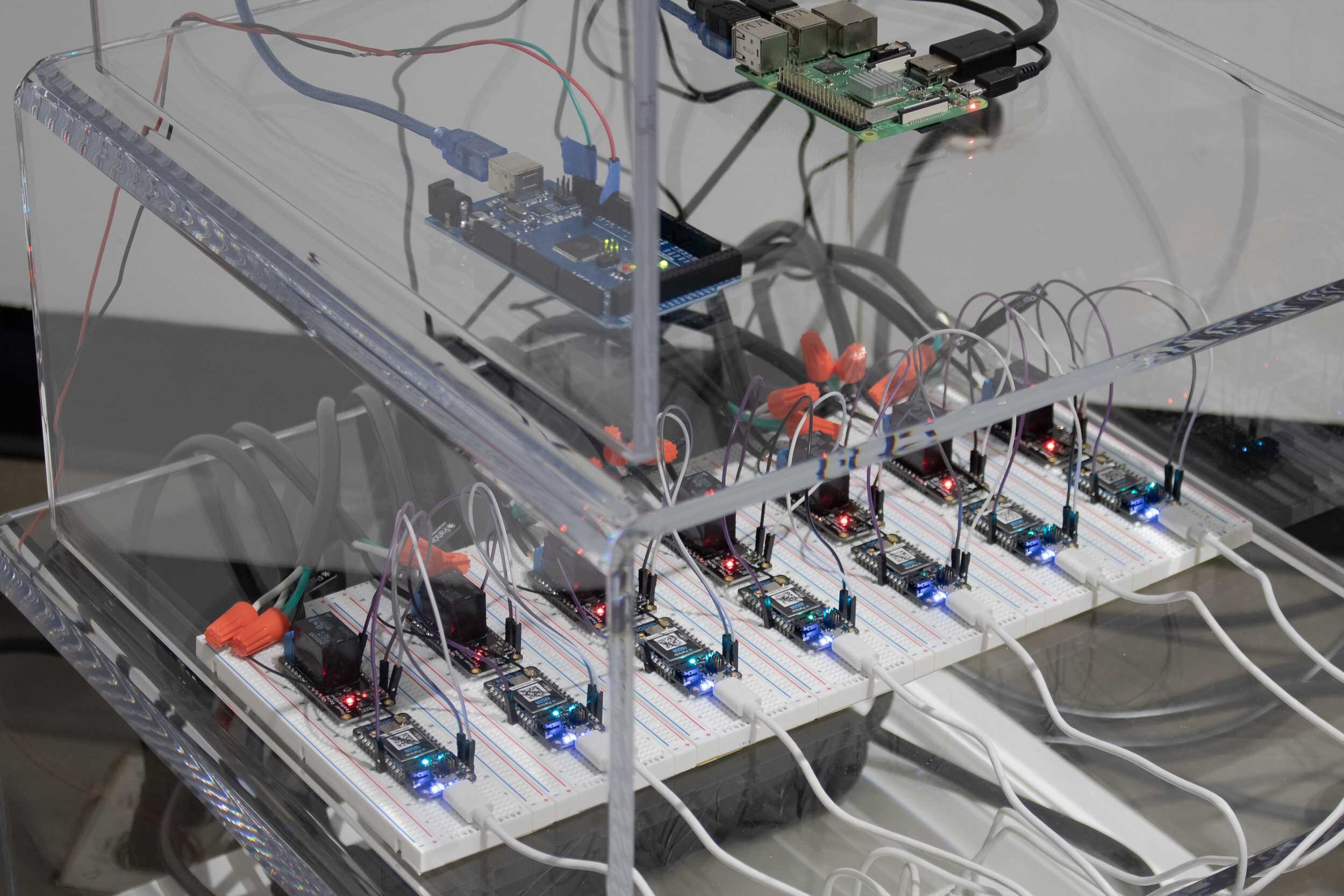
Contested Territories, “installation view of wifi microcontrollers and electrical relays for networked lab shakers”

Contested Territories, “detail of label with corresponding Twitter hashtag”
These laboratory machines activate when Twitter hashtags associated with the culturally contested status of Science are tweeted. As the networked devices intermittently check for the latest tweets, the mixers' movements materialize the sociopolitical complexities of language. Here, the mere mention of #sciencebased agitates tubes filled with laboratory animal feces. When taking office, the Trump administration controversially advised how to improve the chances of receiving research funding with the suggestion to avoid seven words and phrases like “vulnerable”, “diversity”, “entitlement”, “transgender”, “fetus”, “evidence-based”, and “science-based". Each lab shaker is accompanied by an etched stainless-steel placard with the corresponding Twitter hashtag that activates it.
2019, Laura Splan, https://www.laurasplan.com/contested-territories

Contested Territories, “installation view of wifi microcontrollers and electrical relays for networked lab shakers”

Contested Territories, “detail of label with corresponding Twitter hashtag”
(772)
2019
Crip Technoscience Manifesto
Aimi Hamraie, Kelly Fritsch
As disabled people engaged in disability community, activism, and scholarship, our collective experiences and histories have taught us that we are effective agents of world building and dismantling toward more socially just relations. The grounds for social justice and world remaking, however, are frictioned; technologies, architectures, and infrastructures are often designed and implemented without committing to disability as a difference that matters. This manifesto calls attention to the powerful, messy, non-innocent, contradictory, and nevertheless crucial work of what we name as “crip technoscience,” practices of critique, alteration, and reinvention of our material-discursive world. Disabled people are experts and designers of everyday life. But we also harness technoscience for political action, refusing to comply with demands to cure, fix, or eliminate disability. Attentive to the intersectional workings of power and privilege, we agitate against independence and productivity as requirements for existence. Instead, we center technoscientific activism and critical design practices that foster disability justice.
2019, Aimi Hamraie and Kelly Fritsch, Catalyst Vol. 5 No. 1: Crip Technoscience, https://doi.org/10.28968/cftt.v5i1.29607, submitted by Aimi Hamraie
https://catalystjournal.org/index.php/catalyst/article/view/29607
As disabled people engaged in disability community, activism, and scholarship, our collective experiences and histories have taught us that we are effective agents of world building and dismantling toward more socially just relations. The grounds for social justice and world remaking, however, are frictioned; technologies, architectures, and infrastructures are often designed and implemented without committing to disability as a difference that matters. This manifesto calls attention to the powerful, messy, non-innocent, contradictory, and nevertheless crucial work of what we name as “crip technoscience,” practices of critique, alteration, and reinvention of our material-discursive world. Disabled people are experts and designers of everyday life. But we also harness technoscience for political action, refusing to comply with demands to cure, fix, or eliminate disability. Attentive to the intersectional workings of power and privilege, we agitate against independence and productivity as requirements for existence. Instead, we center technoscientific activism and critical design practices that foster disability justice.
2019, Aimi Hamraie and Kelly Fritsch, Catalyst Vol. 5 No. 1: Crip Technoscience, https://doi.org/10.28968/cftt.v5i1.29607, submitted by Aimi Hamraie
https://catalystjournal.org/index.php/catalyst/article/view/29607
(773)
2019
Race after Technology
Ruha Benjamin
From everyday apps to complex algorithms, Ruha Benjamin cuts through tech-industry hype to understand how emerging technologies can reinforce White supremacy and deepen social inequity.
Benjamin argues that automation, far from being a sinister story of racist programmers scheming on the dark web, has the potential to hide, speed up, and deepen discrimination while appearing neutral and even benevolent when compared to the racism of a previous era. Presenting the concept of the “New Jim Code,” she shows how a range of discriminatory designs encode inequity by explicitly amplifying racial hierarchies; by ignoring but thereby replicating social divisions; or by aiming to fix racial bias but ultimately doing quite the opposite. Moreover, she makes a compelling case for race itself as a kind of technology, designed to stratify and sanctify social injustice in the architecture of everyday life.
This illuminating guide provides conceptual tools for decoding tech promises with sociologically informed skepticism. In doing so, it challenges us to question not only the technologies we are sold but also the ones we ourselves manufacture.
2019, Ruha Benjamin, Polity, submitted by emma baizabal
https://www.ruhabenjamin.com/race-after-technology
From everyday apps to complex algorithms, Ruha Benjamin cuts through tech-industry hype to understand how emerging technologies can reinforce White supremacy and deepen social inequity.
Benjamin argues that automation, far from being a sinister story of racist programmers scheming on the dark web, has the potential to hide, speed up, and deepen discrimination while appearing neutral and even benevolent when compared to the racism of a previous era. Presenting the concept of the “New Jim Code,” she shows how a range of discriminatory designs encode inequity by explicitly amplifying racial hierarchies; by ignoring but thereby replicating social divisions; or by aiming to fix racial bias but ultimately doing quite the opposite. Moreover, she makes a compelling case for race itself as a kind of technology, designed to stratify and sanctify social injustice in the architecture of everyday life.
This illuminating guide provides conceptual tools for decoding tech promises with sociologically informed skepticism. In doing so, it challenges us to question not only the technologies we are sold but also the ones we ourselves manufacture.
2019, Ruha Benjamin, Polity, submitted by emma baizabal
https://www.ruhabenjamin.com/race-after-technology
(774)
2019
Feminist Scrollytelling: Visual Data Essays About Intersectionality
Franziska Morlok, Marian Dörk
Systemic oppression, marginalization and inequalities are invisible, incomprehensible, and intangible for the privileged—especially, because they are not part of their lived experience. Structural discrimination and marginalization can be demonstrated and explained through concrete examples. Just think of the impact socioeconomic background has on educational aspirations, of the very low percentage of women in political or business leadership positions, and of the rampant labor exploitation in the care sector. The following visual data essays at the intersection of editorial design and information visualization make complex issues pertaining to discrimination, systemic inequalities and marginalization accessible to a broader audience. Interdisciplinary teams of Design and European Media Studies students developed these short essays to explore the ways in which various axes of power/privilege and disadvantage such as race, ethnicity, religion, gender, class, disability, sexual orientation and gender identity overlap to create unique dynamics and effects, also known as intersectionality. The course was conducted in cooperation with the Center for Intersectional Justice (CIJ).
2019, Prof. Franziska Morlok & Prof. Dr. Marian Dörk, Fachhochschule Potsdam University of Applied Sciences, Editorial Design & Information Visualization; submitted by Marian Dörk
https://infovis.fh-potsdam.de/femscroll/
Systemic oppression, marginalization and inequalities are invisible, incomprehensible, and intangible for the privileged—especially, because they are not part of their lived experience. Structural discrimination and marginalization can be demonstrated and explained through concrete examples. Just think of the impact socioeconomic background has on educational aspirations, of the very low percentage of women in political or business leadership positions, and of the rampant labor exploitation in the care sector. The following visual data essays at the intersection of editorial design and information visualization make complex issues pertaining to discrimination, systemic inequalities and marginalization accessible to a broader audience. Interdisciplinary teams of Design and European Media Studies students developed these short essays to explore the ways in which various axes of power/privilege and disadvantage such as race, ethnicity, religion, gender, class, disability, sexual orientation and gender identity overlap to create unique dynamics and effects, also known as intersectionality. The course was conducted in cooperation with the Center for Intersectional Justice (CIJ).
2019, Prof. Franziska Morlok & Prof. Dr. Marian Dörk, Fachhochschule Potsdam University of Applied Sciences, Editorial Design & Information Visualization; submitted by Marian Dörk
https://infovis.fh-potsdam.de/femscroll/
(775)
2019
P 115-1U
Justyna Górowska
The American corporation Pantone chose "Leaving Coral" for the color of 2019, while almost all the coral reef dies affected by the fading process. That is why site-specific work at the Shefter Gallery was announced as "Color of the year 2020: Bleached Coral", thus paying attention to the ecological crisis in which we find ourselves. “You are what you eat. What you drink and what you breathe. You are a plastic child of capitalism. Pantone, the American corporation which has monopolized the color scale, will once more make reef the color of the year. Not adding, this time, that it was living. And no one will add that the reef was fading.“
Seemingly empty and sterile space is the @WetmeWild Instagram gallery developed in Augmented Reality technology that can be seen by every viewer through a shared application that can be downloaded on the phone.
2019, Justyna Górowska, Shefter Gallery, https://justynagorowska.com/P-115-1-U, project description from artist’s website; submitted by Justyna Górowska
https://vimeo.com/359572465?embedded=true&source=vimeo_logo&owner=13264346
Krakow
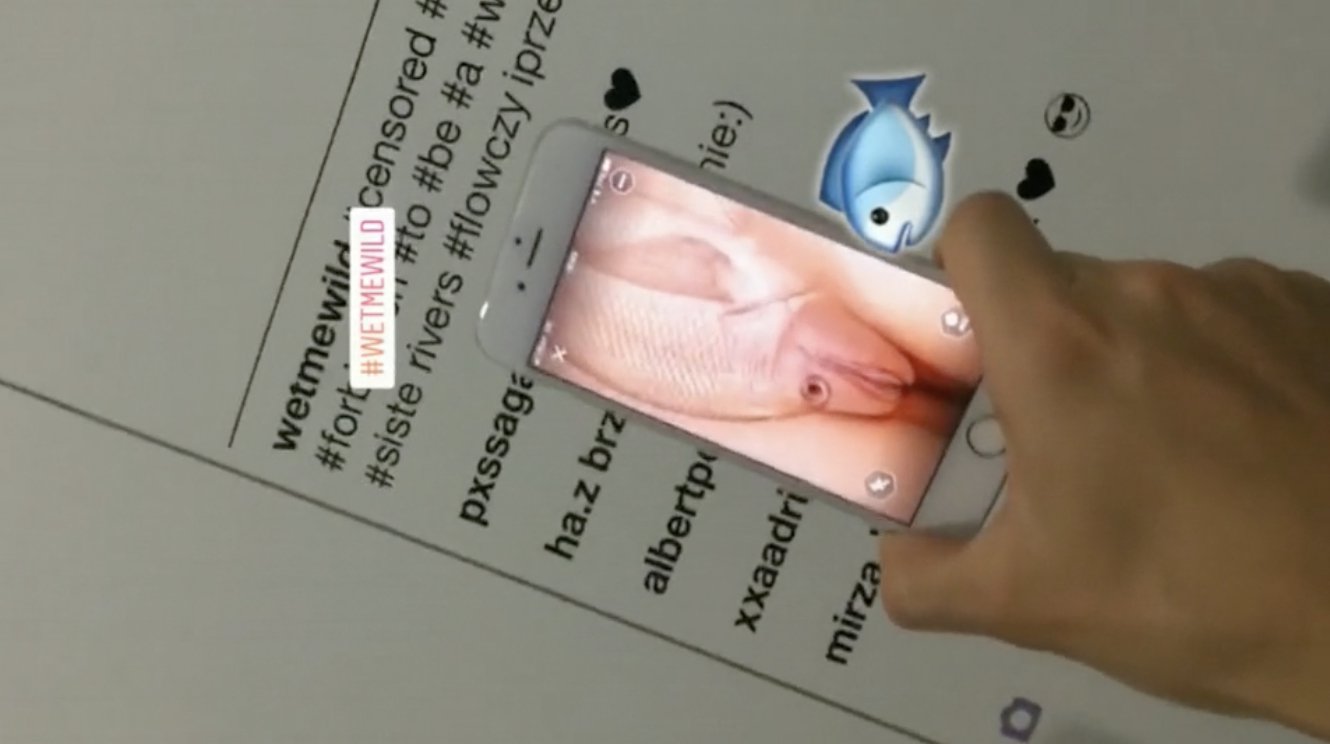
P 115-1U, screenshot 00:09, https://vimeo.com/359572465?embedded=true&source=vimeo_logo&owner=13264346
The American corporation Pantone chose "Leaving Coral" for the color of 2019, while almost all the coral reef dies affected by the fading process. That is why site-specific work at the Shefter Gallery was announced as "Color of the year 2020: Bleached Coral", thus paying attention to the ecological crisis in which we find ourselves. “You are what you eat. What you drink and what you breathe. You are a plastic child of capitalism. Pantone, the American corporation which has monopolized the color scale, will once more make reef the color of the year. Not adding, this time, that it was living. And no one will add that the reef was fading.“
Seemingly empty and sterile space is the @WetmeWild Instagram gallery developed in Augmented Reality technology that can be seen by every viewer through a shared application that can be downloaded on the phone.
2019, Justyna Górowska, Shefter Gallery, https://justynagorowska.com/P-115-1-U, project description from artist’s website; submitted by Justyna Górowska
https://vimeo.com/359572465?embedded=true&source=vimeo_logo&owner=13264346
Krakow

P 115-1U, screenshot 00:09, https://vimeo.com/359572465?embedded=true&source=vimeo_logo&owner=13264346
(776)
2019
Camgirl.com: Women Creating Space for Themselves Online
Katharine Wimett
In July 1998, a young Meredith Doeksen appeared on the PBS (Public Broadcasting Service) talk-show program Net Café in an episode titled “Cyber Chats.” During the interview, she explained a new form of video conferencing technology called CU-SeeMe. Developed at Cornell University, Doeksen was connecting with others via live refreshing images coupled with instant messaging. With her CU-SeeMe account embedded on her website concretecam.simplenet.com Doeksen was creating an online community she knew personally. At one point, the interviewer suggests Doeksen had become so well known that she was a CU-SeeMe celebrity. Doeksen’s appearance on Net Café.
This was a young woman, online, broadcasting herself in the hope of connecting with others. After the interview and at some point in 1998, Doeksen purchased and transferred her personal site to the domain: camgirl.com. [...]
Defined in today’s context, a camgirl or webcam model as they are more often referred to, is typically a female performer who sells a variety of services (exotic dance masturbation shows) to online customers.1 These performances are captured by a webcam and broadcast live on a service website such as camgirl.com. This being the same domain once owned by Doeksen however, in 2016 she sold the camgirl.com domain to ICF Technology, a live streaming service.
2018–2019, Katharine Wimett, Undergraduate Thesis, ArtEZ hogeschool voor de kunsten, http://katharinewimett.us/thesis/; submitted by Katharine Wimett
Editor’s Note: This essay discusses camgirls such as Jennifer Ringley, Meredith Doeksen, Lindsay Dye, Shawné Michaelain Holloway, and DesignerMissy.

Camgirl.com Thesis by Katharine Wimett, screengrab of Meredith Doeksen, 1998, http://katharinewimett.us/thesis

Camgirl.com Thesis by Katharine Wimett, screengrab of Jennifer Ringley, 1998, image from http://katharinewimett.us/thesis
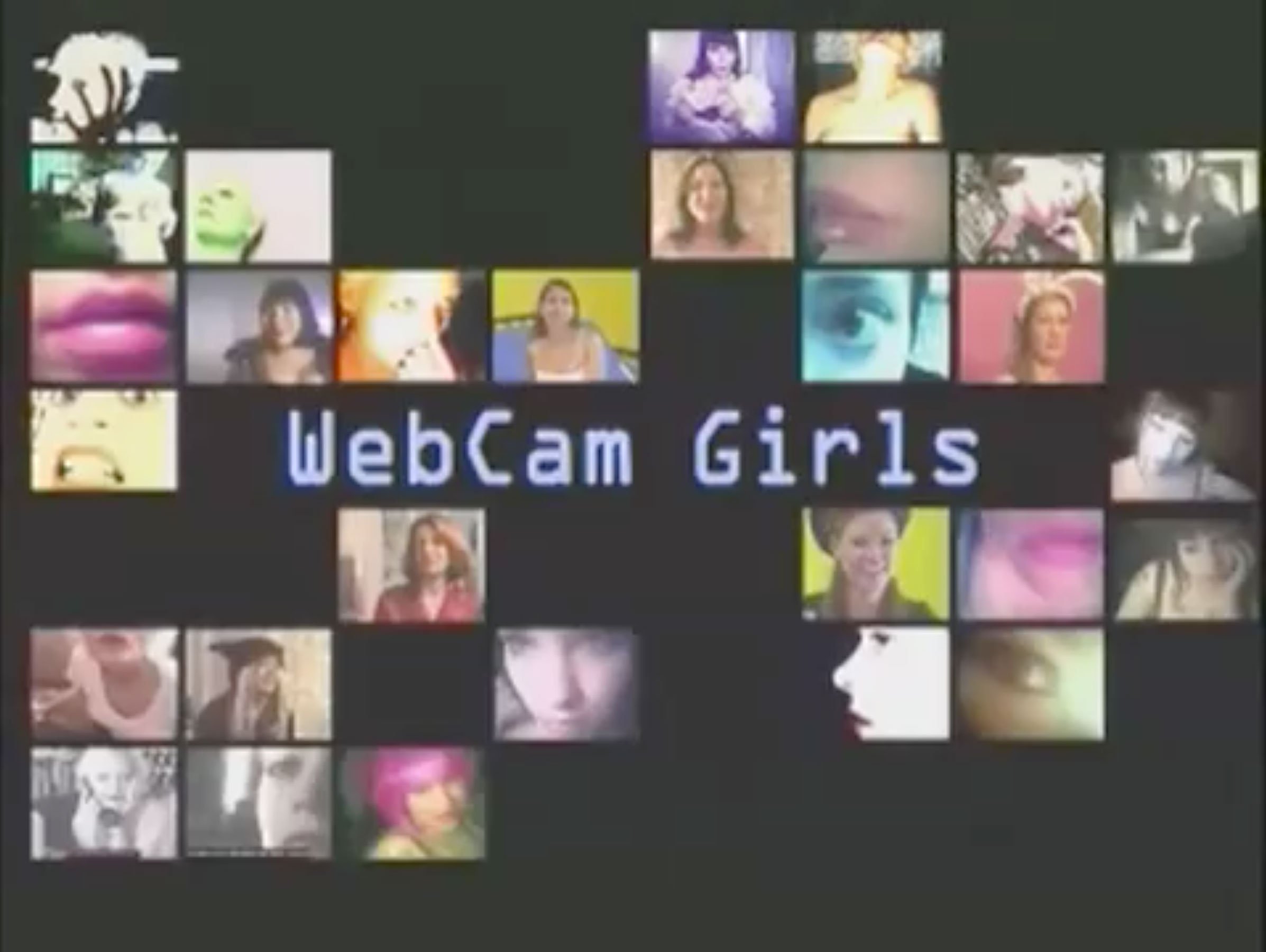
Camgirl.com Thesis by Katharine Wimett, still from Webcam Girls (2005) with interviewee Theresa Sneft, image from http://katharinewimett.us/thesis/#webcam_girls

Camgirl.com Thesis by Katharine Wimett, screengrab of Jennifer Ringley, 1998, image from http://katharinewimett.us/thesis/#webcam_girls and https://web.archive.org/web/19980124170052/http://www.jennicam.org/~jenni/tour/
In July 1998, a young Meredith Doeksen appeared on the PBS (Public Broadcasting Service) talk-show program Net Café in an episode titled “Cyber Chats.” During the interview, she explained a new form of video conferencing technology called CU-SeeMe. Developed at Cornell University, Doeksen was connecting with others via live refreshing images coupled with instant messaging. With her CU-SeeMe account embedded on her website concretecam.simplenet.com Doeksen was creating an online community she knew personally. At one point, the interviewer suggests Doeksen had become so well known that she was a CU-SeeMe celebrity. Doeksen’s appearance on Net Café.
This was a young woman, online, broadcasting herself in the hope of connecting with others. After the interview and at some point in 1998, Doeksen purchased and transferred her personal site to the domain: camgirl.com. [...]
Defined in today’s context, a camgirl or webcam model as they are more often referred to, is typically a female performer who sells a variety of services (exotic dance masturbation shows) to online customers.1 These performances are captured by a webcam and broadcast live on a service website such as camgirl.com. This being the same domain once owned by Doeksen however, in 2016 she sold the camgirl.com domain to ICF Technology, a live streaming service.
2018–2019, Katharine Wimett, Undergraduate Thesis, ArtEZ hogeschool voor de kunsten, http://katharinewimett.us/thesis/; submitted by Katharine Wimett
Editor’s Note: This essay discusses camgirls such as Jennifer Ringley, Meredith Doeksen, Lindsay Dye, Shawné Michaelain Holloway, and DesignerMissy.

Camgirl.com Thesis by Katharine Wimett, screengrab of Meredith Doeksen, 1998, http://katharinewimett.us/thesis

Camgirl.com Thesis by Katharine Wimett, screengrab of Jennifer Ringley, 1998, image from http://katharinewimett.us/thesis
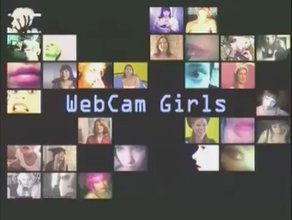
Camgirl.com Thesis by Katharine Wimett, still from Webcam Girls (2005) with interviewee Theresa Sneft, image from http://katharinewimett.us/thesis/#webcam_girls

Camgirl.com Thesis by Katharine Wimett, screengrab of Jennifer Ringley, 1998, image from http://katharinewimett.us/thesis/#webcam_girls and https://web.archive.org/web/19980124170052/http://www.jennicam.org/~jenni/tour/
(777)
2019
Black Movement Project
LaJuné McMillian
LaJuné McMillian: The project itself is called The Black Movement Project. I’m trying to focus on building a motion capture library and tool for black 3D-based characters. It’s a library that people can use to download motion-capture files and character they want to use. They will have access to the way that we move through time. It’s a museum, or an archive, of the ways that we move.
Salome Asega: There are so many entry points to how we think about access: access to resources, access as it relates to disability justice. I like this idea of access to yourself and your representation in digital form, in 3D form.
LM: What I’m trying to do is create a space where I can bring black people into the 3D community. I want to bring in black performers and activists. I’m trying to create this space where we can all sit down and build these tools together.
2019–present, LaJuné McMillian, excerpt from interview with Salome Asega, Eyebeam, https://www.eyebeam.org/residents/lajune-mcmillian/; submitted by Corey O'Hara
LaJuné McMillian: The project itself is called The Black Movement Project. I’m trying to focus on building a motion capture library and tool for black 3D-based characters. It’s a library that people can use to download motion-capture files and character they want to use. They will have access to the way that we move through time. It’s a museum, or an archive, of the ways that we move.
Salome Asega: There are so many entry points to how we think about access: access to resources, access as it relates to disability justice. I like this idea of access to yourself and your representation in digital form, in 3D form.
LM: What I’m trying to do is create a space where I can bring black people into the 3D community. I want to bring in black performers and activists. I’m trying to create this space where we can all sit down and build these tools together.
2019–present, LaJuné McMillian, excerpt from interview with Salome Asega, Eyebeam, https://www.eyebeam.org/residents/lajune-mcmillian/; submitted by Corey O'Hara
(778)
2019
Recurrent Queer Imaginaries
Helen Pritchard, Winnie Soon
Recurrent Queer Imaginaries features queer manifestos, urban dreams and the new artificial intelligence entity—Motto Assistant. As a machine learner, “Motto Assistant” continuously writes mottos for revolutions, anti-fascist guiding principles of living, queer love ethics, authoritarian resistances, political movements, class struggles, municipal identities, city planning, art practices, joyful engagements and violent direct action. The artwork was developed using manifestos and zines for queer and intersectional life as source text for machine learning and generative processes with neural networks. Incoherent and worm-eaten, Soon and Pritchard invite the audience to interpret a motto from Motto Assistant as a guiding principle of how to reorganize your collective life and fight injustices in the present.
2019, Helen Pritchard and Winnie Soon, https://siusoon.net/projects/recurrentqueerimaginaries; submitted by Winnie Soon
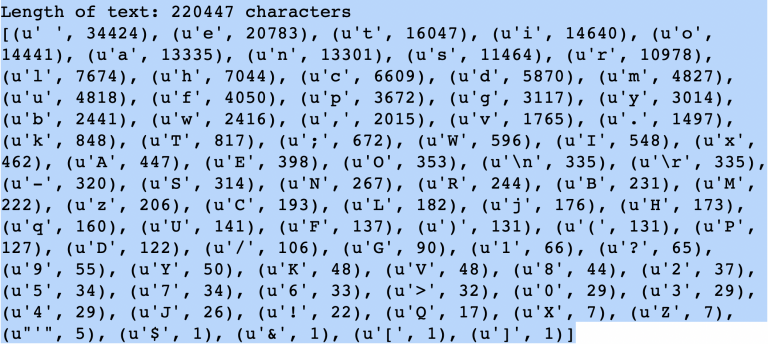
Recurrent Queer Imaginaries, image from https://siusoon.net/projects/recurrentqueerimaginaries
Recurrent Queer Imaginaries features queer manifestos, urban dreams and the new artificial intelligence entity—Motto Assistant. As a machine learner, “Motto Assistant” continuously writes mottos for revolutions, anti-fascist guiding principles of living, queer love ethics, authoritarian resistances, political movements, class struggles, municipal identities, city planning, art practices, joyful engagements and violent direct action. The artwork was developed using manifestos and zines for queer and intersectional life as source text for machine learning and generative processes with neural networks. Incoherent and worm-eaten, Soon and Pritchard invite the audience to interpret a motto from Motto Assistant as a guiding principle of how to reorganize your collective life and fight injustices in the present.
2019, Helen Pritchard and Winnie Soon, https://siusoon.net/projects/recurrentqueerimaginaries; submitted by Winnie Soon
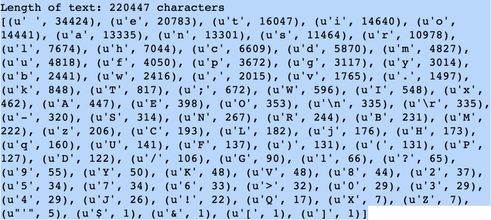
Recurrent Queer Imaginaries, image from https://siusoon.net/projects/recurrentqueerimaginaries
(779)
2019
sWitches
pamela varela, Ines DeRu, and Ella Hebendanz
We are sWitches, an interdisciplinary, cyberfeminist, artivist constellation formed by pamela varela, Ines DeRu, and Ella Hebendanz. Taking the witch as a symbol for the rebellious feminist, we make our way into the patriarchal technological field, to express a more diverse(ifying) view on technology. In our exploration of sensorial experiences, interventions and manifestations, we fuse circuits of electricity to extend and enhance human connection and solidarity. We use technology as a subject of critique, while simultaneously envisioning it as a tool/medium for contemporary magick. We ground our diverse ancestral roots and (digital) spirits to our sensual bodies by transforming the spaces we inhabit and reclaiming our voices.
2019–present, sWitches, https://ssswitchesss.earth/; submitted by sWitches
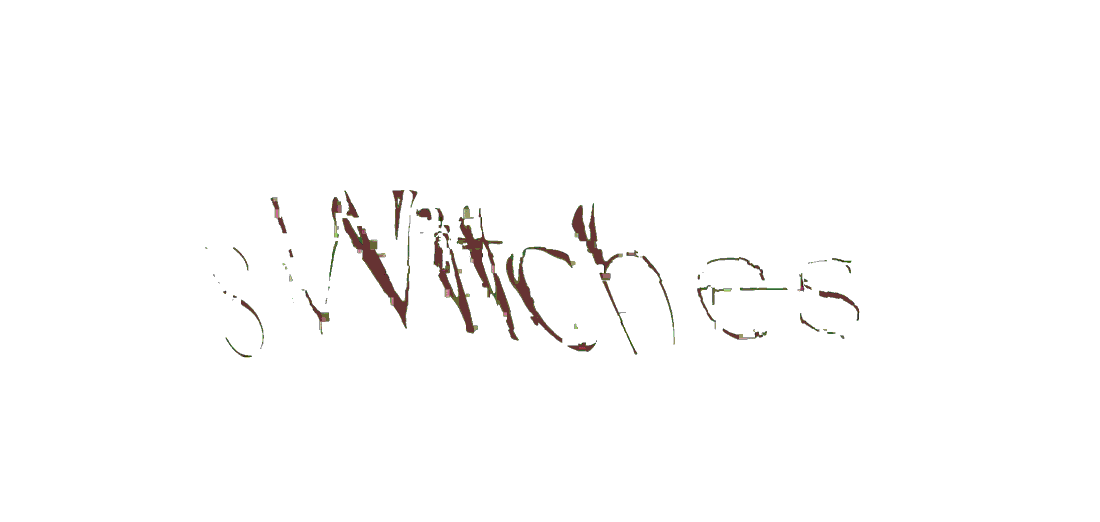
artifact from https://ssswitchesss.earth/
We are sWitches, an interdisciplinary, cyberfeminist, artivist constellation formed by pamela varela, Ines DeRu, and Ella Hebendanz. Taking the witch as a symbol for the rebellious feminist, we make our way into the patriarchal technological field, to express a more diverse(ifying) view on technology. In our exploration of sensorial experiences, interventions and manifestations, we fuse circuits of electricity to extend and enhance human connection and solidarity. We use technology as a subject of critique, while simultaneously envisioning it as a tool/medium for contemporary magick. We ground our diverse ancestral roots and (digital) spirits to our sensual bodies by transforming the spaces we inhabit and reclaiming our voices.
2019–present, sWitches, https://ssswitchesss.earth/; submitted by sWitches

artifact from https://ssswitchesss.earth/
(780)
2019
sWitches manifestX
sWitches
void void void
start
{
shX is coming
rewriting redefining repositioning
reowning reclaiming rebooting
opening new circuits of connections
creating currents of electricity
flowing through a network that demands her hacking
shX is the future
the antagonist of patriarchal reigns
gliding across worlds
a hybrid creature free from borders
emancipated: beast
shX shapes
form and face
shX changes
shX is mothXr, matriX, and thousands of names
shX manifests in all that is living
shX is many
shX is us
}
2019, sWitches, (x) https://ssswitchesss.earth/manifestX
void void void
start
{
shX is coming
rewriting redefining repositioning
reowning reclaiming rebooting
opening new circuits of connections
creating currents of electricity
flowing through a network that demands her hacking
shX is the future
the antagonist of patriarchal reigns
gliding across worlds
a hybrid creature free from borders
emancipated: beast
shX shapes
form and face
shX changes
shX is mothXr, matriX, and thousands of names
shX manifests in all that is living
shX is many
shX is us
}
2019, sWitches, (x) https://ssswitchesss.earth/manifestX
(781)
2019
Plastic Existence
Feixue Mei
An exploration of the plasticity of fan-art and the plastic desire of fan art artists. Characters provide a way to communicate and express oneself, characters provide a layer of protection. Fan-art can thus be used to empathetically express deeply personal, intimate, and even transgressive emotions in networks of mutual exposure and vulnerability. Through fan-art, an artist is able to transgress, play or pursue pleasure without restraint.
2019, https://feixuemei.info/design/plastic-existence/plastic-existence.html; submitted by Feixue Mei
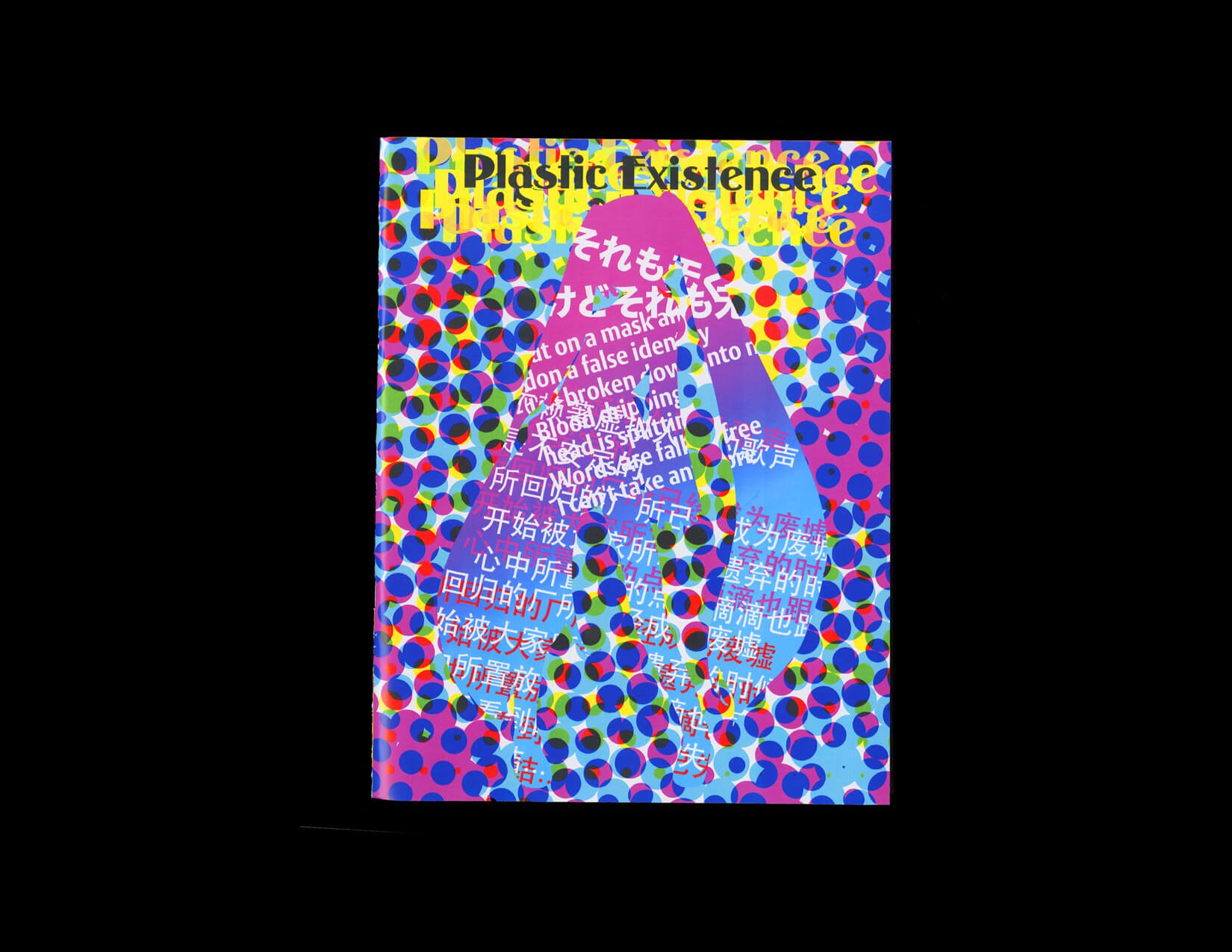
Plastic Existence, cover page, image from https://feixuemei.info/design/plastic-existence/plastic-existence.html
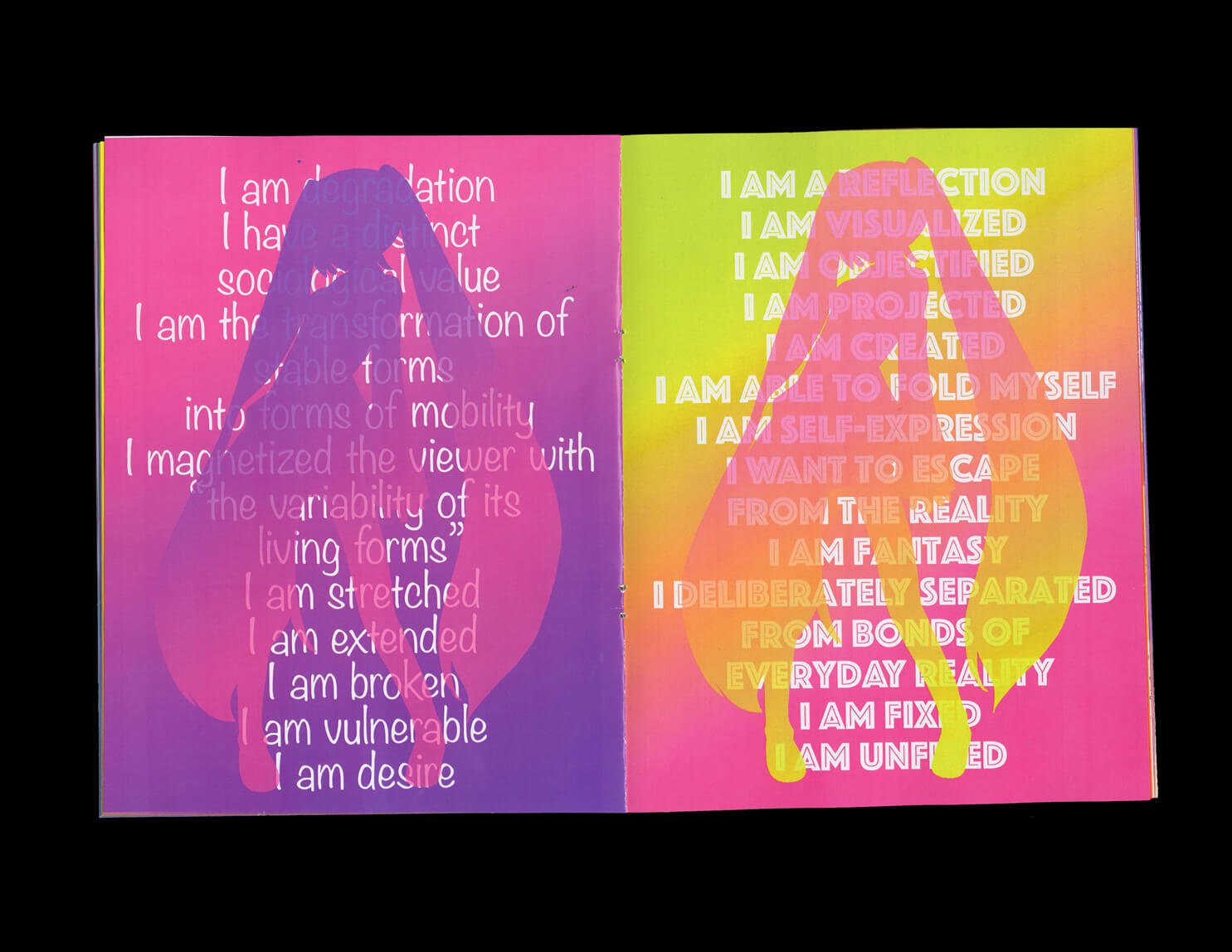
Plastic Existence, interior spread, image from https://feixuemei.info/design/plastic-existence/plastic-existence.html
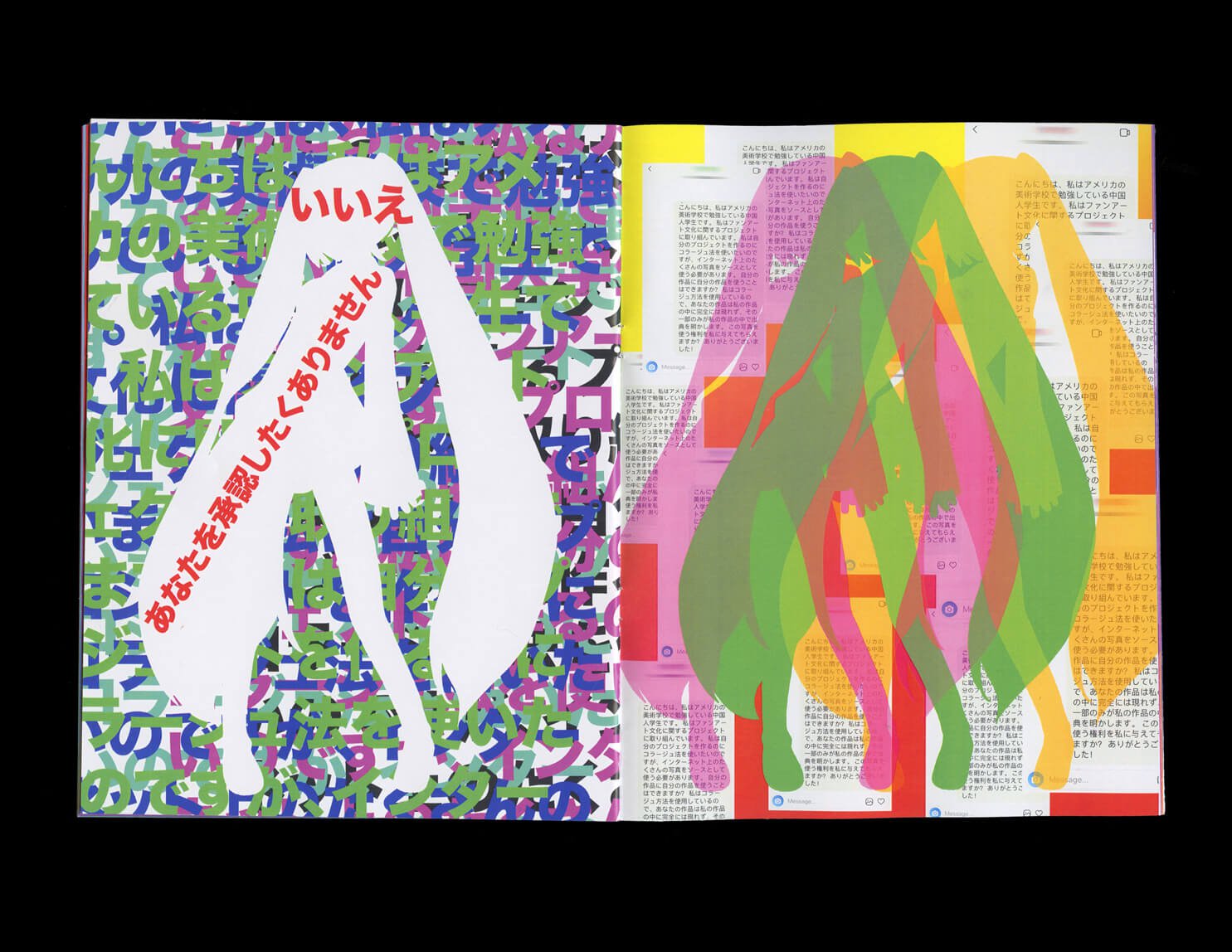
Plastic Existence, interior spread, image from https://feixuemei.info/design/plastic-existence/plastic-existence.html
An exploration of the plasticity of fan-art and the plastic desire of fan art artists. Characters provide a way to communicate and express oneself, characters provide a layer of protection. Fan-art can thus be used to empathetically express deeply personal, intimate, and even transgressive emotions in networks of mutual exposure and vulnerability. Through fan-art, an artist is able to transgress, play or pursue pleasure without restraint.
2019, https://feixuemei.info/design/plastic-existence/plastic-existence.html; submitted by Feixue Mei
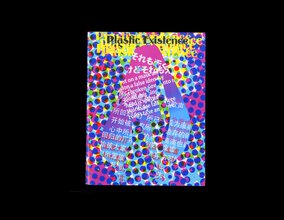
Plastic Existence, cover page, image from https://feixuemei.info/design/plastic-existence/plastic-existence.html
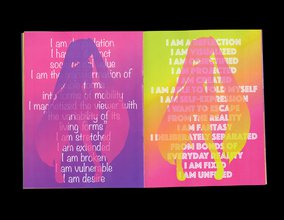
Plastic Existence, interior spread, image from https://feixuemei.info/design/plastic-existence/plastic-existence.html
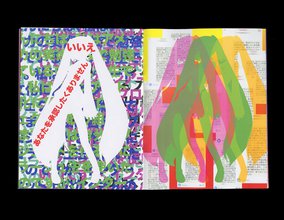
Plastic Existence, interior spread, image from https://feixuemei.info/design/plastic-existence/plastic-existence.html
(782)
2019
Live in Reality
Feixue Mei
This project discusses identity as constructed and performed and the loss of self. People’s posts on their social media accounts form their online identities, which are separate from their physical bodies. Our social media accounts, and what we post on these digital platforms, are extensions of our physical bodies; they are different but parallel identities. They are us but at the same time, they are not. The physical body is falling, fading, and drowning in cyberspace. I used various art forms to discuss the idea of fluid identity.
2019, excerpt from https://feixuemei.info/design/live-in-reality/live-in-reality.html; submitted by Feixue Mei
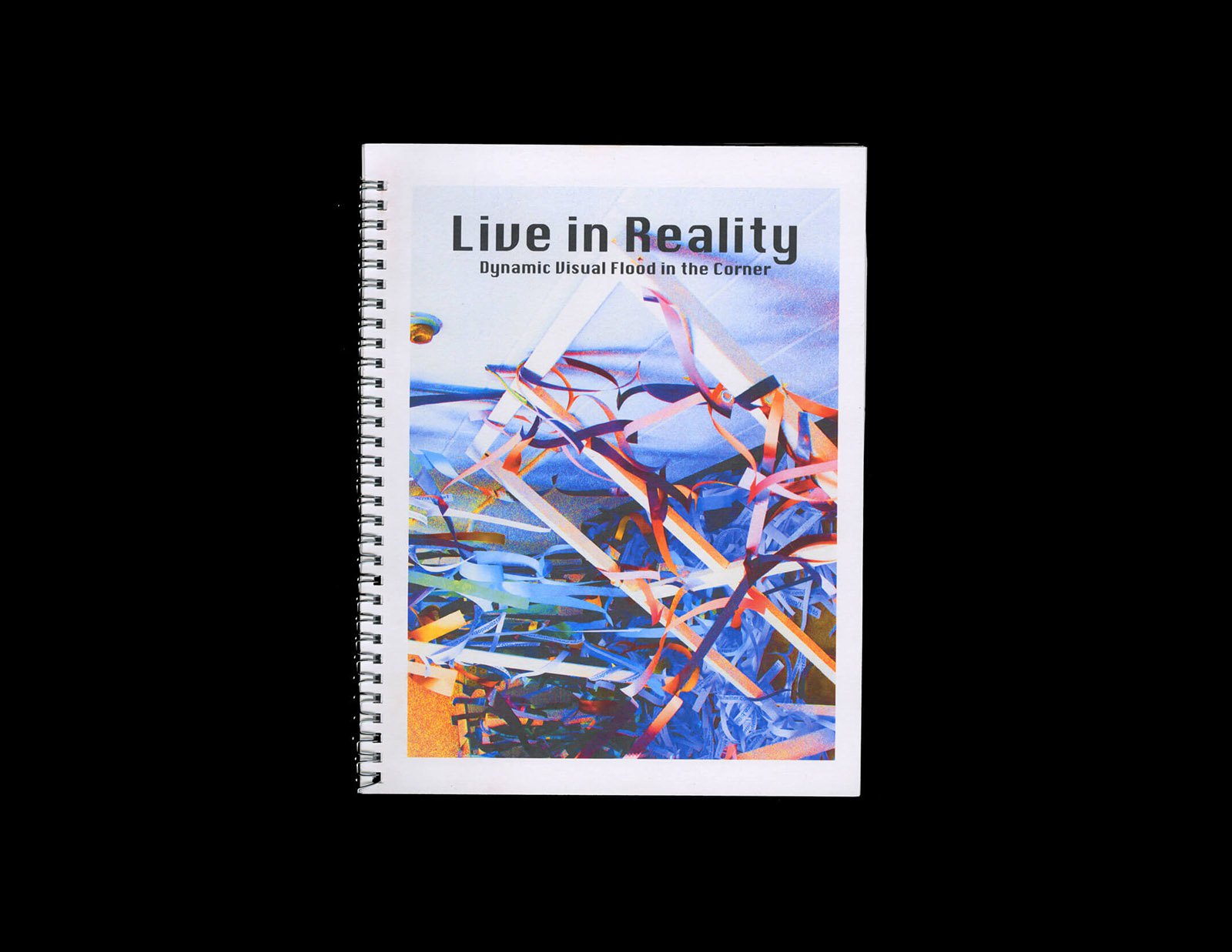
Live in Reality, cover page, image from https://feixuemei.info/design/live-in-reality/live-in-reality.html
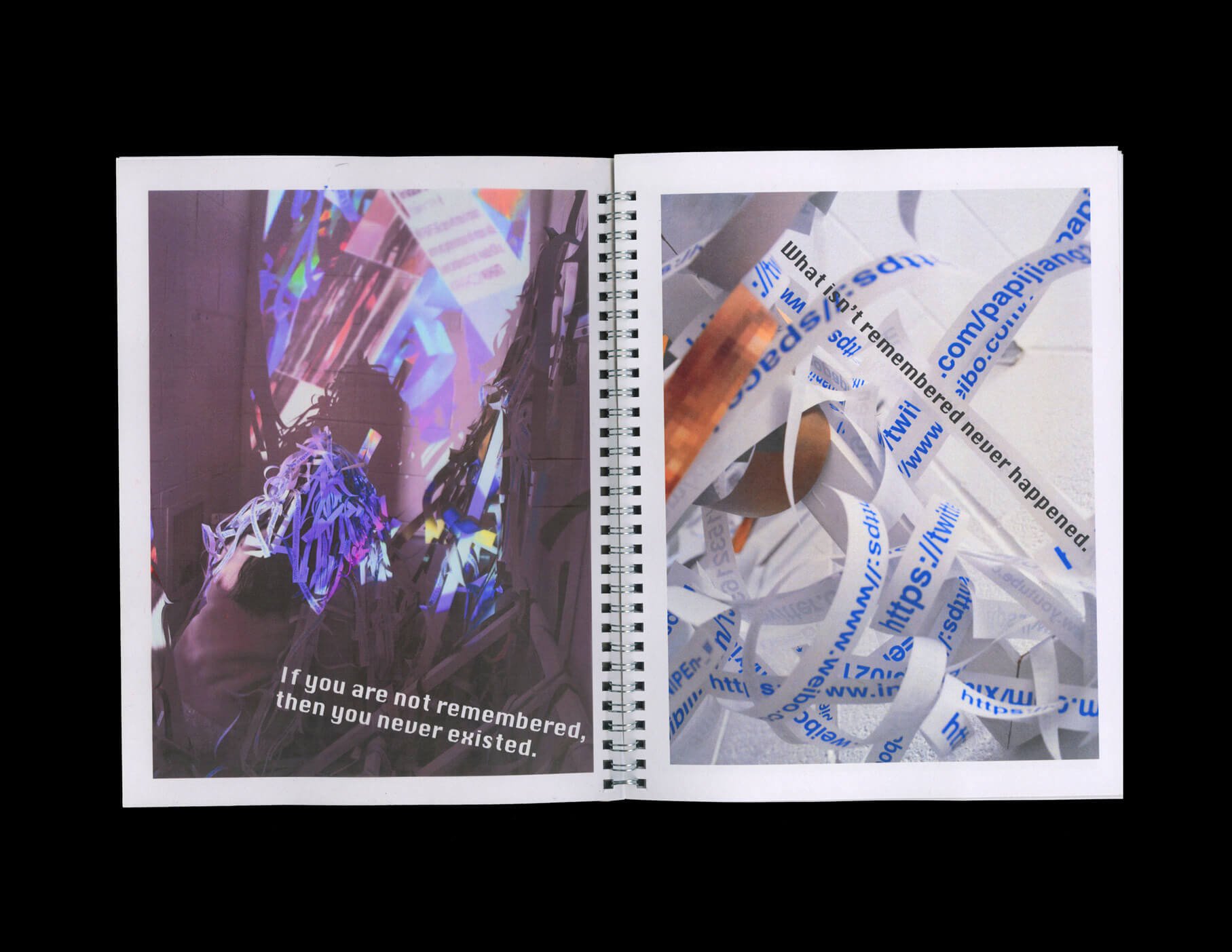
Live in Reality, interior spread, image from https://feixuemei.info/design/live-in-reality/live-in-reality.html

Live in Reality, installation, image from https://feixuemei.info/design/live-in-reality/live-in-reality.html
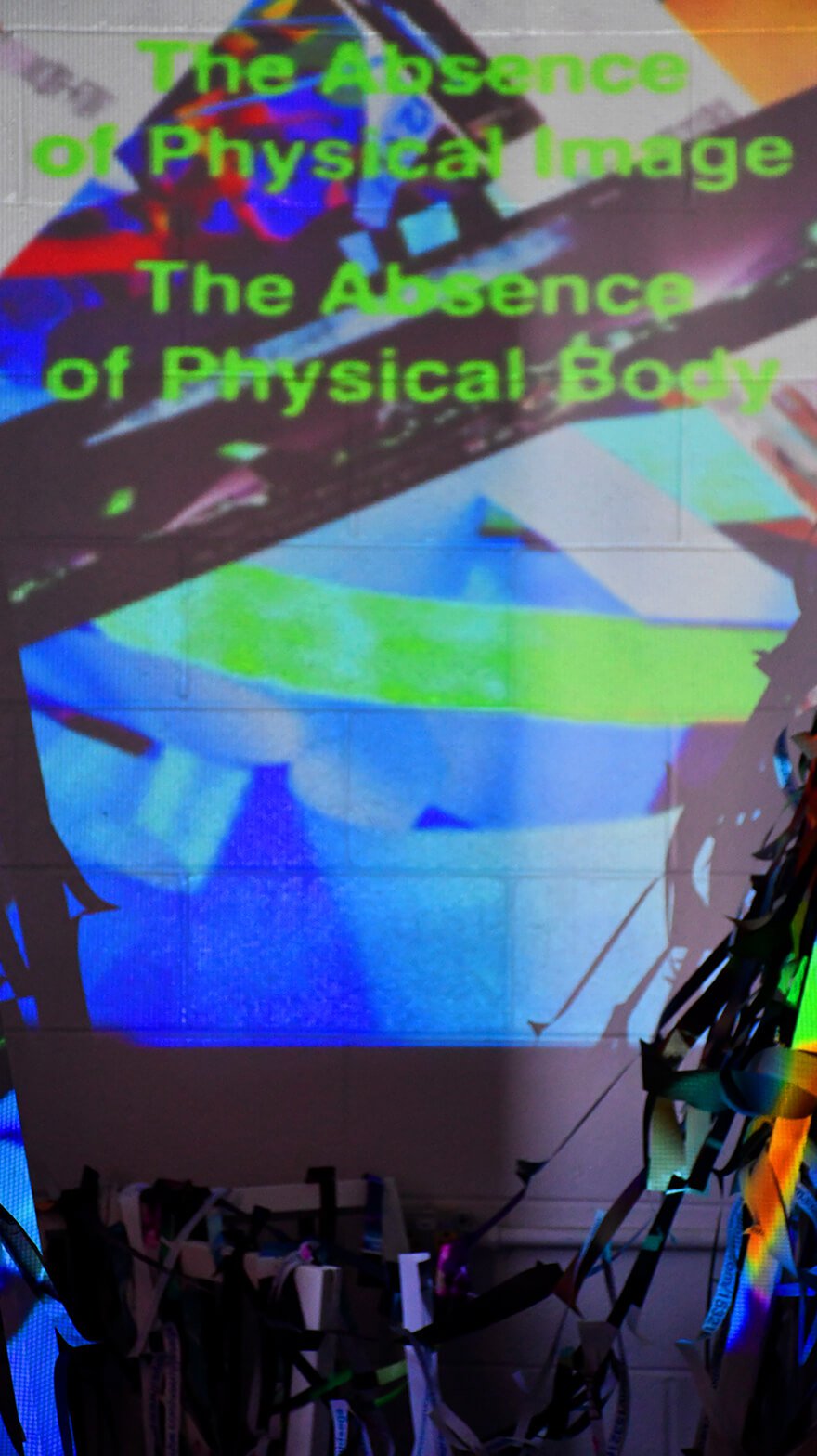
Live in Reality, performance, image from https://feixuemei.info/design/live-in-reality/live-in-reality.html
This project discusses identity as constructed and performed and the loss of self. People’s posts on their social media accounts form their online identities, which are separate from their physical bodies. Our social media accounts, and what we post on these digital platforms, are extensions of our physical bodies; they are different but parallel identities. They are us but at the same time, they are not. The physical body is falling, fading, and drowning in cyberspace. I used various art forms to discuss the idea of fluid identity.
2019, excerpt from https://feixuemei.info/design/live-in-reality/live-in-reality.html; submitted by Feixue Mei

Live in Reality, cover page, image from https://feixuemei.info/design/live-in-reality/live-in-reality.html
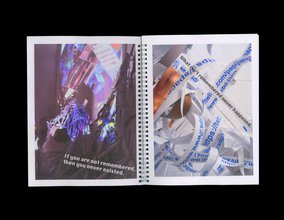
Live in Reality, interior spread, image from https://feixuemei.info/design/live-in-reality/live-in-reality.html

Live in Reality, installation, image from https://feixuemei.info/design/live-in-reality/live-in-reality.html
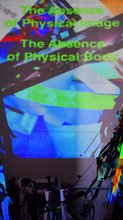
Live in Reality, performance, image from https://feixuemei.info/design/live-in-reality/live-in-reality.html
(783)
2019–
2020
Otherness
Feixue Mei
In the context of globalization, cultural manipulation, and language adaptation, how the typographic landscape around the internet, fan-space, and shared online platforms influence contemporary interaction and shape cultural identity. A story between me and my internet persona.
2019–2020, https://feixuemei.info/design/otherness/otherness.html; submitted by Feixue Mei
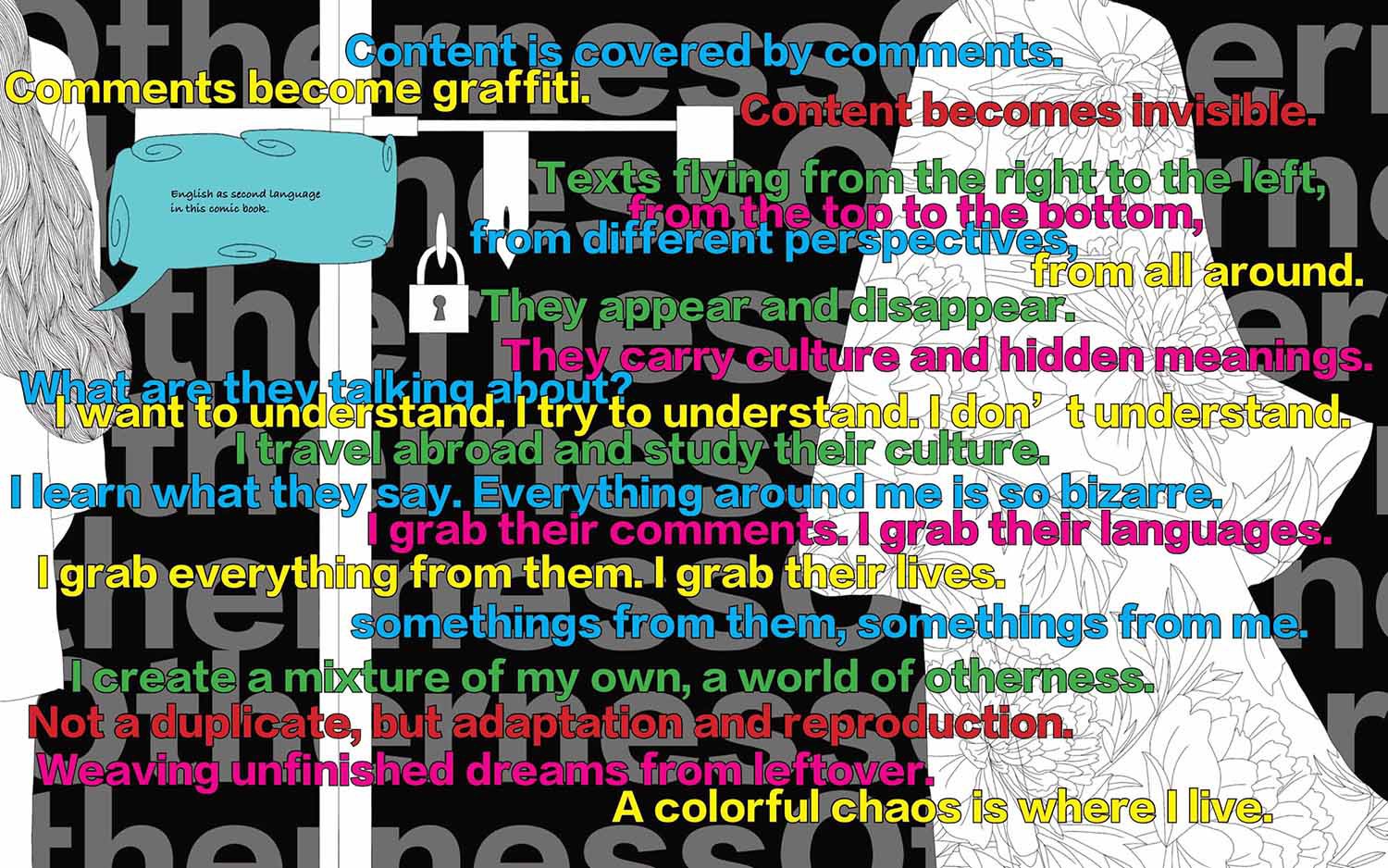
Otherness, image from https://feixuemei.info/design/otherness/otherness.html
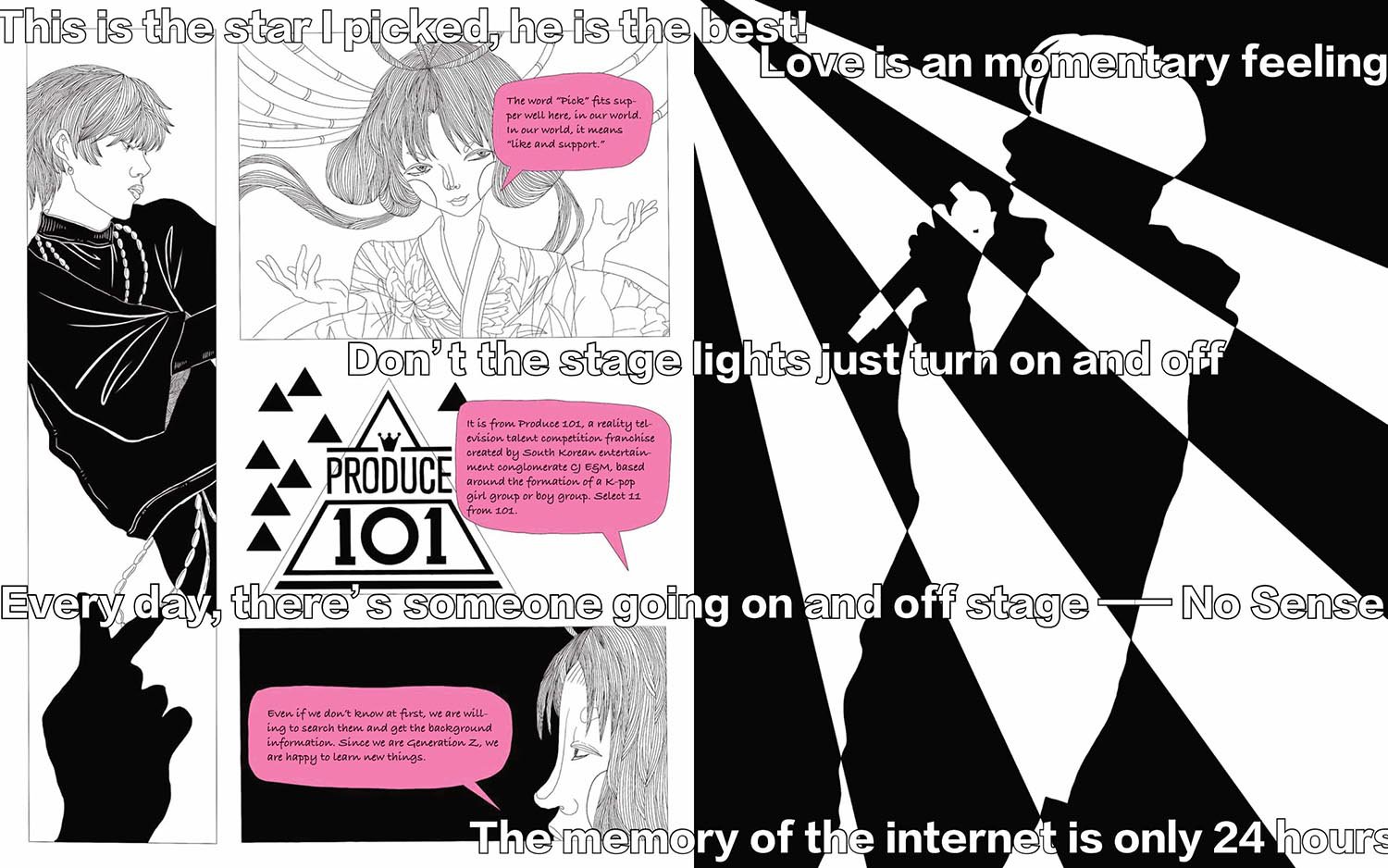
Otherness, image from https://feixuemei.info/design/otherness/otherness.html
In the context of globalization, cultural manipulation, and language adaptation, how the typographic landscape around the internet, fan-space, and shared online platforms influence contemporary interaction and shape cultural identity. A story between me and my internet persona.
2019–2020, https://feixuemei.info/design/otherness/otherness.html; submitted by Feixue Mei

Otherness, image from https://feixuemei.info/design/otherness/otherness.html
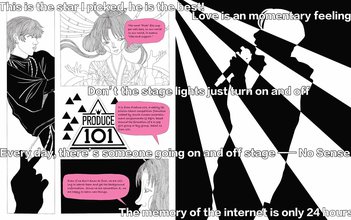
Otherness, image from https://feixuemei.info/design/otherness/otherness.html
(784)
2020
Data Feminism
Catherine D'Ignazio, Lauren Klein
Data is a double-edged sword. In a very real sense, data has been used as a weapon by those in power to consolidate their control—over places and things, as well as people. Indeed, a central goal of this book is to show how governments and corporations have long employed data and statistics as management techniques to preserve an unequal status quo. (419) Working with data from a feminist perspective requires knowing and acknowledging this history. […] Data is part of the problem, to be sure. But they are also part of the solution. Another central goal of this book is to show how the power of data can be wielded back. […] Our claim, once again, is that data feminism is for everyone. It’s for people of all genders. It’s by people of all genders. And most importantly: it’s about much more than gender. Data feminism is about power, about who has it and who doesn’t, and about how those differentials of power can be challenged and changed using data. We invite you, the readers of this book, to join us on this journey toward justice and toward remaking our data-driven world.
2020, Catherine D’Ignazio and Lauren F. Klein (Cambridge, MA: MIT Press, 2020); excerpt pp. 14–19
https://data-feminism.mitpress.mit.edu/
Data is a double-edged sword. In a very real sense, data has been used as a weapon by those in power to consolidate their control—over places and things, as well as people. Indeed, a central goal of this book is to show how governments and corporations have long employed data and statistics as management techniques to preserve an unequal status quo. (419) Working with data from a feminist perspective requires knowing and acknowledging this history. […] Data is part of the problem, to be sure. But they are also part of the solution. Another central goal of this book is to show how the power of data can be wielded back. […] Our claim, once again, is that data feminism is for everyone. It’s for people of all genders. It’s by people of all genders. And most importantly: it’s about much more than gender. Data feminism is about power, about who has it and who doesn’t, and about how those differentials of power can be challenged and changed using data. We invite you, the readers of this book, to join us on this journey toward justice and toward remaking our data-driven world.
2020, Catherine D’Ignazio and Lauren F. Klein (Cambridge, MA: MIT Press, 2020); excerpt pp. 14–19
https://data-feminism.mitpress.mit.edu/
(785)
2020
Drag vs. AI Virtual Workshop
Matisse DuPont a.k.a. Monstera Delicious
Get ready to drag the cistem! On Thursday, June 25th, 2020, at 7pm EDT, the Algorithmic Justice League proudly presents the first ever Drag Vs. AI Virtual Workshop. Join gender scholar and consultant Matisse DuPont (@matisse.dupont) a.k.a. Monstera Delicious (@mxmonstera) as they lead you through the pratfalls of Facial Recognition Technologies (yes, there are FRTs, plural!), and explore the ways that drag can be used to thwart algorithmic injustice. Monstera Delicious will be joined by fellow drag performers Akira Oni (@akira.oni) and DVVSK (@dvvsk), who will teach you how to use drag to mess with facial recognition technologies (98) using only objects you find around your house or a single makeup item. This will be a lesson in drag (676) vs. AI, as well as in creativity and ingenuity as we fight for Algorithmic Justice!
2020, Matisse DuPont (Monstera Delicious), https://www.ajl.org/drag-vs-ai
https://www.eventbrite.com/e/drag-vs-ai-virtual-workshop-tickets-109692631614 https://twitter.com/AJLUnited/status/1273269635908067329

Banner graphic from https://www.eventbrite.com/e/drag-vs-ai-virtual-workshop-tickets-109692631614
Get ready to drag the cistem! On Thursday, June 25th, 2020, at 7pm EDT, the Algorithmic Justice League proudly presents the first ever Drag Vs. AI Virtual Workshop. Join gender scholar and consultant Matisse DuPont (@matisse.dupont) a.k.a. Monstera Delicious (@mxmonstera) as they lead you through the pratfalls of Facial Recognition Technologies (yes, there are FRTs, plural!), and explore the ways that drag can be used to thwart algorithmic injustice. Monstera Delicious will be joined by fellow drag performers Akira Oni (@akira.oni) and DVVSK (@dvvsk), who will teach you how to use drag to mess with facial recognition technologies (98) using only objects you find around your house or a single makeup item. This will be a lesson in drag (676) vs. AI, as well as in creativity and ingenuity as we fight for Algorithmic Justice!
2020, Matisse DuPont (Monstera Delicious), https://www.ajl.org/drag-vs-ai
https://www.eventbrite.com/e/drag-vs-ai-virtual-workshop-tickets-109692631614 https://twitter.com/AJLUnited/status/1273269635908067329

Banner graphic from https://www.eventbrite.com/e/drag-vs-ai-virtual-workshop-tickets-109692631614
(786)
2020
Future Is TransFeminist: From Imagination to Action
Joana Varon
For the last few years, inspired by creative exchanges with feminists from different spots around planet Earth, I’ve started to play with the idea of envisioning speculative transfeminist futures. What would the future look like if algorithms that command our daily interactions were developed based on feminist values? What if the technologies we cherish were developed to crash, instead of maintain, the matrix of domination of capitalism, hetero-patriarchy, white supremacy, and colonisation? […]
Imagination is a tool for revolution. We cannot change unwanted trends if we do not envision alternatives. Feminist science fiction writer Ursula Le Guin (257) has, among other things, exposed how boring and limited is the world view in which gender is solely a binary concept. She once said: “The thing about science fiction is, it isn’t about the future. It’s about the present. But the future gives us great freedom of imagination. It’s like a mirror. You can see the back of your own head.”
2020, Joana Varon, Deep Dives, Medium, July 3, 2020, https://deepdives.in/the-future-is-transfeminist-from-imagination-to-action-6365e097eb22
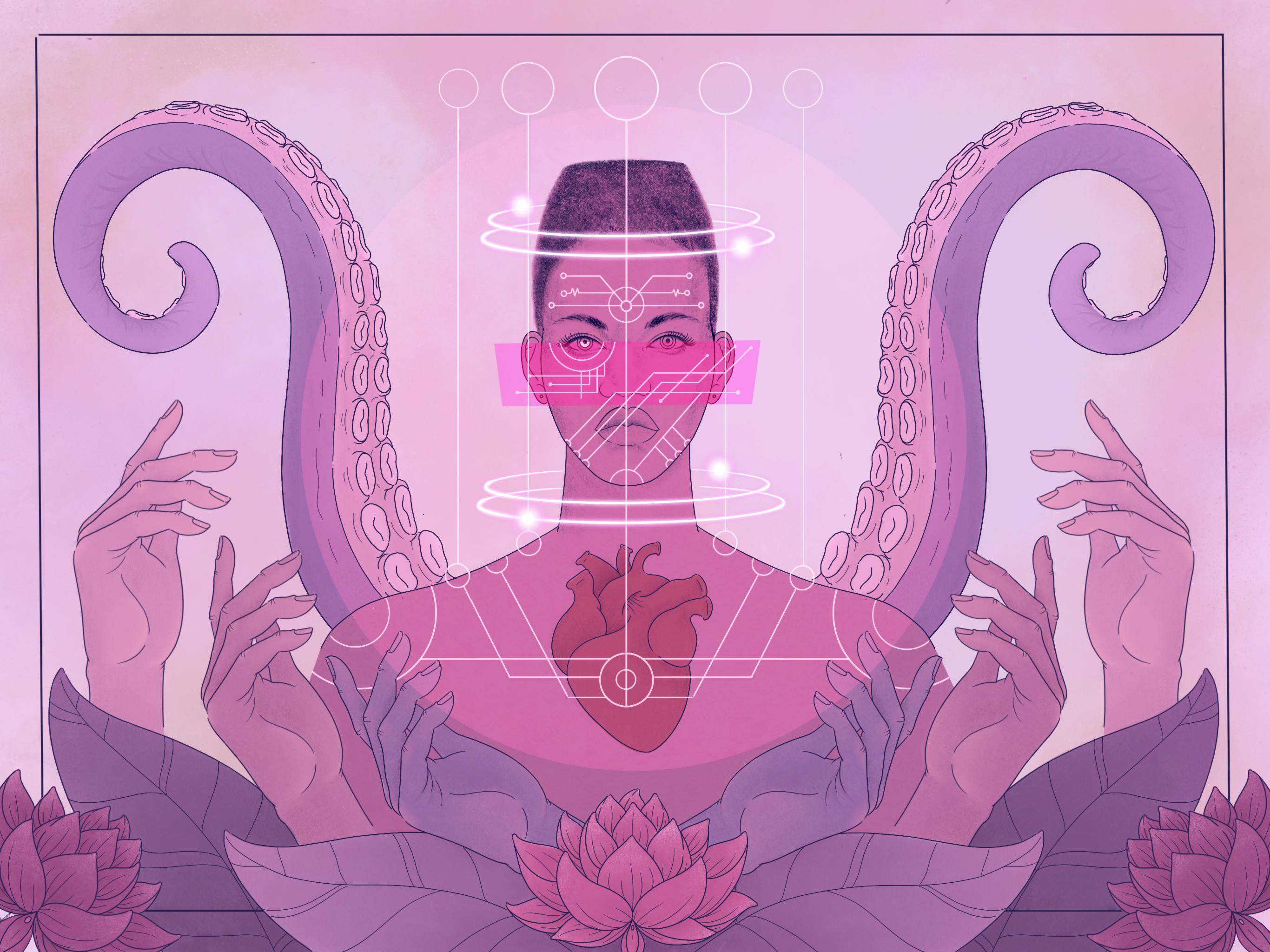
“Clara Juliano, designer at Coding Rights”, image from https://deepdives.in/the-future-is-transfeminist-from-imagination-to-action-6365e097eb22
For the last few years, inspired by creative exchanges with feminists from different spots around planet Earth, I’ve started to play with the idea of envisioning speculative transfeminist futures. What would the future look like if algorithms that command our daily interactions were developed based on feminist values? What if the technologies we cherish were developed to crash, instead of maintain, the matrix of domination of capitalism, hetero-patriarchy, white supremacy, and colonisation? […]
Imagination is a tool for revolution. We cannot change unwanted trends if we do not envision alternatives. Feminist science fiction writer Ursula Le Guin (257) has, among other things, exposed how boring and limited is the world view in which gender is solely a binary concept. She once said: “The thing about science fiction is, it isn’t about the future. It’s about the present. But the future gives us great freedom of imagination. It’s like a mirror. You can see the back of your own head.”
2020, Joana Varon, Deep Dives, Medium, July 3, 2020, https://deepdives.in/the-future-is-transfeminist-from-imagination-to-action-6365e097eb22
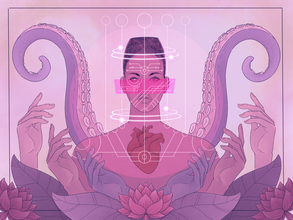
“Clara Juliano, designer at Coding Rights”, image from https://deepdives.in/the-future-is-transfeminist-from-imagination-to-action-6365e097eb22
(787)
2020
Open Source Afro Hair Library
A.M. Darke
Across digital media, Black people are portrayed in ways that are derogatory, inaccurate, stereotypical, demeaning, and otherwise harmful–if we are depicted at all. The representation of afro-textured Black hair is noticeably limited, with options ranging from comically large afros, unstyled “dread” locs, and misshapen cornrows. In real life, natural Black hair is considered a liability in academic and professional settings, with Black people being subject to loss of employment, school suspension, and even having our hair forcibly removed before being allowed in athletic competitions. Laws such as the Crown Act in California are making headway toward justice and dignity for the corporeal Black body, but what of the virtual world? What advances can we make to address issues of power and representation in digital realms?
The Open Source Afro Hair Library (OSAHL) is a queer, feminist, antiracist 3D database for Black hair textures and styles. Functioning both as social practice and technological development, OSAHL is a necessary intervention in computer graphics and digital media, (337) building the material and community resources needed to fundamentally reimagine the construction and consumption of Black bodies in virtual space.
2020, A.M. Darke, https://afrohairlibrary.org/; referred by Xin Xin
https://prettydarke.cool/portfolio/open-source-afro-hair-library/ https://vimeo.com/411452990

Render by Annabel Maokhamphiou

Render by Annabel Maokhamphiou
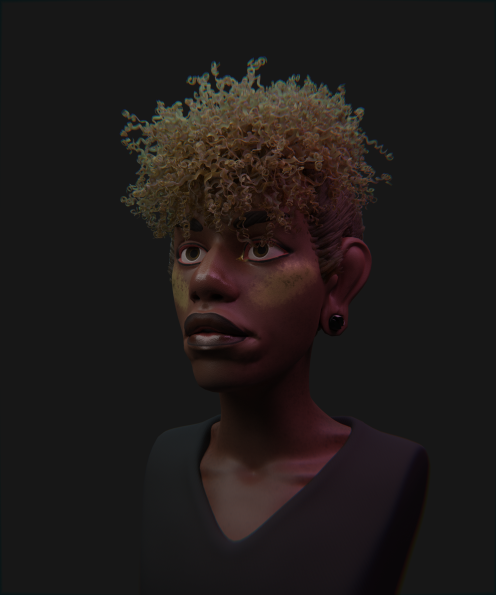
Render by H. D. Harris
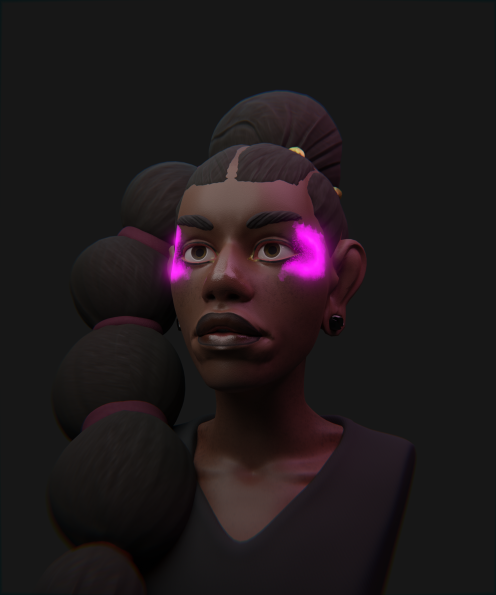
Render by H. D. Harris

Render by H. D. Harris
Across digital media, Black people are portrayed in ways that are derogatory, inaccurate, stereotypical, demeaning, and otherwise harmful–if we are depicted at all. The representation of afro-textured Black hair is noticeably limited, with options ranging from comically large afros, unstyled “dread” locs, and misshapen cornrows. In real life, natural Black hair is considered a liability in academic and professional settings, with Black people being subject to loss of employment, school suspension, and even having our hair forcibly removed before being allowed in athletic competitions. Laws such as the Crown Act in California are making headway toward justice and dignity for the corporeal Black body, but what of the virtual world? What advances can we make to address issues of power and representation in digital realms?
The Open Source Afro Hair Library (OSAHL) is a queer, feminist, antiracist 3D database for Black hair textures and styles. Functioning both as social practice and technological development, OSAHL is a necessary intervention in computer graphics and digital media, (337) building the material and community resources needed to fundamentally reimagine the construction and consumption of Black bodies in virtual space.
2020, A.M. Darke, https://afrohairlibrary.org/; referred by Xin Xin
https://prettydarke.cool/portfolio/open-source-afro-hair-library/ https://vimeo.com/411452990

Render by Annabel Maokhamphiou
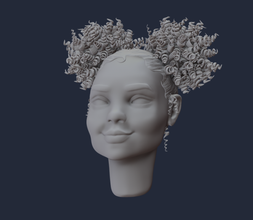
Render by Annabel Maokhamphiou

Render by H. D. Harris
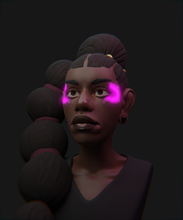
Render by H. D. Harris

Render by H. D. Harris
(788)
2020
Feminist Futures
Katrin Fritsch, Helene von Schwichow
Almost ten years ago I attended the RightsCon conference in Tunis in 2019. All that time I had a dream. A dream that every single person but especially every woman would have the choice of having access or not to the internet. Ten years ago it was as Katrin and Helene qualified it as “UTOPIAN,” inaccessible, unrealistic. The democratization of the internet came thanks to worldwide network coverage. It came also thanks to the devices that allow the safe use of the internet. Thanks to the individuals, believers, NGOs and advocates pressure was made and satellites were launched to cover every single square inch on the planet. (569)
Nowadays, whistleblowers and feminists are still struggling, but come on, it’s nothing compared to what it used to be ten years ago. We can condemn persons who are committing infections or crimes against women.
No more internet blackouts are allowed. We’ve come from so far to let the gains off.
Fellows, the fight for feminist rights is not over.
And please dream. This is how humanity makes steps.
2020, Katrin Fritsch and Helene von Schwichow, https://feministfutures.net/; excerpt from Wajdi Filali, “June 2030,” Feminist Futures, https://feministfutures.net/June-2030

“Weltweiter Aufruf”, artifact from https://feministfutures.net/Weltweiter-Aufruf

“Anonymous Vehicle”, artifact from https://feministfutures.net/Anonymous-Vehicle
Almost ten years ago I attended the RightsCon conference in Tunis in 2019. All that time I had a dream. A dream that every single person but especially every woman would have the choice of having access or not to the internet. Ten years ago it was as Katrin and Helene qualified it as “UTOPIAN,” inaccessible, unrealistic. The democratization of the internet came thanks to worldwide network coverage. It came also thanks to the devices that allow the safe use of the internet. Thanks to the individuals, believers, NGOs and advocates pressure was made and satellites were launched to cover every single square inch on the planet. (569)
Nowadays, whistleblowers and feminists are still struggling, but come on, it’s nothing compared to what it used to be ten years ago. We can condemn persons who are committing infections or crimes against women.
No more internet blackouts are allowed. We’ve come from so far to let the gains off.
Fellows, the fight for feminist rights is not over.
And please dream. This is how humanity makes steps.
2020, Katrin Fritsch and Helene von Schwichow, https://feministfutures.net/; excerpt from Wajdi Filali, “June 2030,” Feminist Futures, https://feministfutures.net/June-2030

“Weltweiter Aufruf”, artifact from https://feministfutures.net/Weltweiter-Aufruf

“Anonymous Vehicle”, artifact from https://feministfutures.net/Anonymous-Vehicle
(789)
2020
Black Trans Archive
Danielle Brathwaite-Shirley
WE ARE HERE BECAUSE OF THOSE
THAT ARE NOT
WELCOME TO THE
PRO BLACK PRO TRANS ARCHIVE
THIS INTERACTIVE ARCHIVE WAS
MADE TO STORE AND CENTRE BLACK
TRANS PEOPLE [page "Trapped by the body? Telepresence Technologies and Transgendered Performance in Feminist and Lesbian Rewritings of Cyberpunk Fiction" not found]
TO PRESERVE
OUR EXPERIENCES
OUR THOUGHTS
OUR FEELINGS
OUR LIVES
TO REMEMBER US EVEN WHEN WE
ARE AT RISK OF BEING ERASED
YOUR OWN IDENTITY WILL
DETERMINE HOW YOU CAN INTERACT
WITH THE ARCHIVE (x)
AS WELL AS WHAT YOU WILL BE ABLE
TO ACCESS
BE HONEST WITH THE ARCHIVE
2020, Danielle Brathwaite Shirley, https://blacktransarchive.com/; referred by Legacy Russell
referred by Legacy Russell
https://www.daniellebrathwaiteshirley.com/
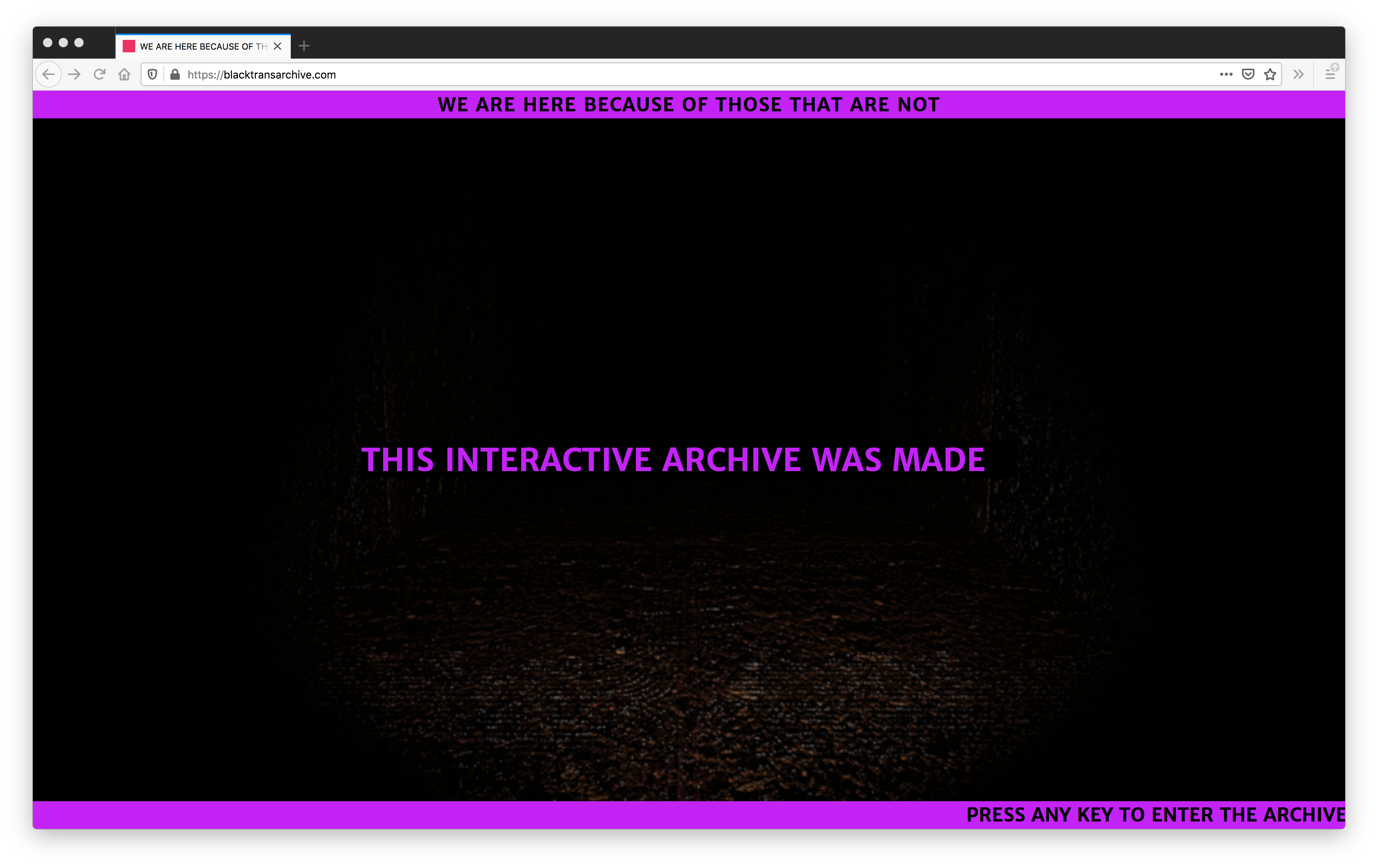
Screenshot, 2020, Firefox v76.0.1 on Mac OS 10.13.3; https://blacktransarchive.com/
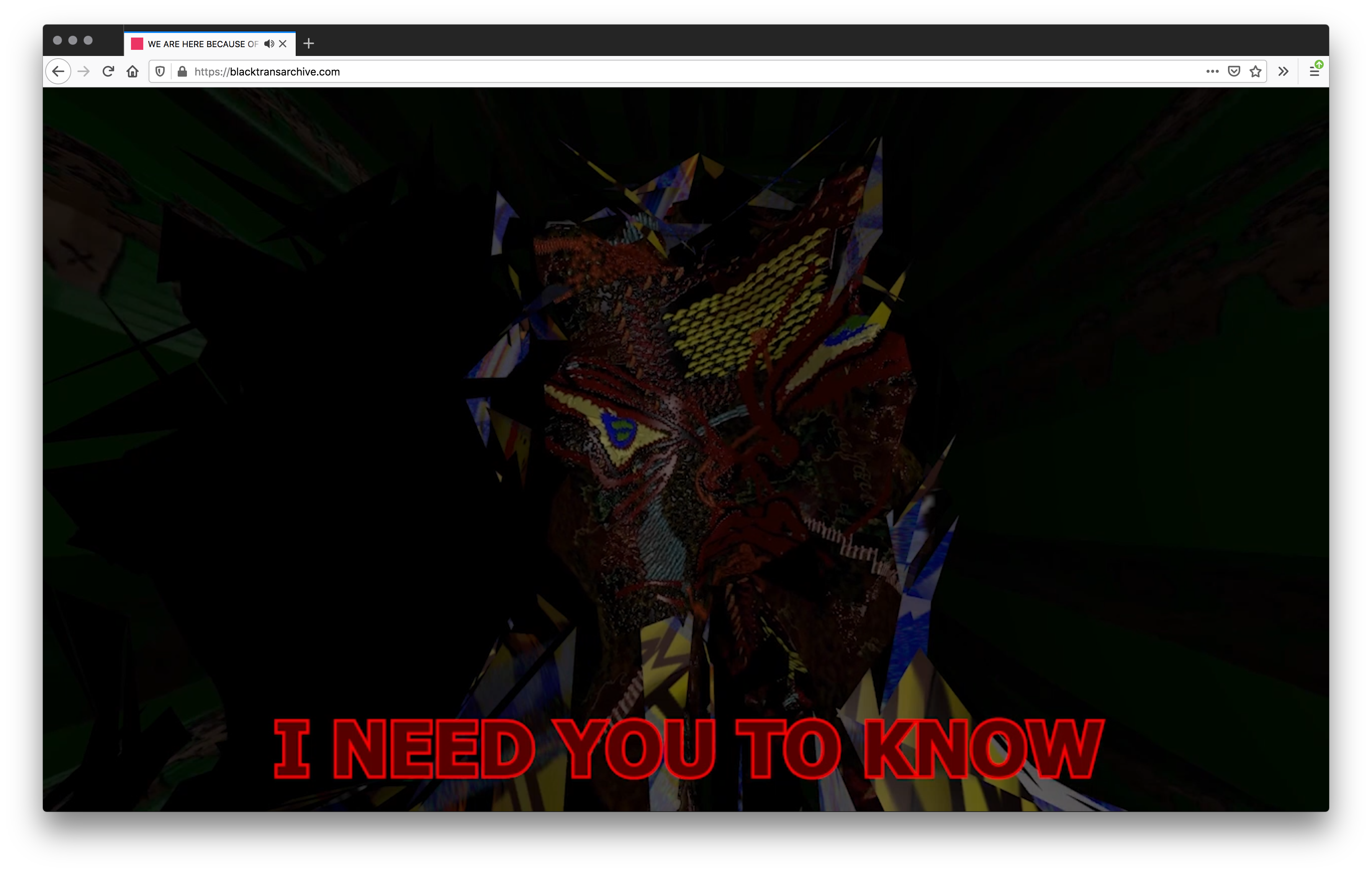
Screenshot, 2020, Firefox v76.0.1 on Mac OS 10.13.3; https://blacktransarchive.com/
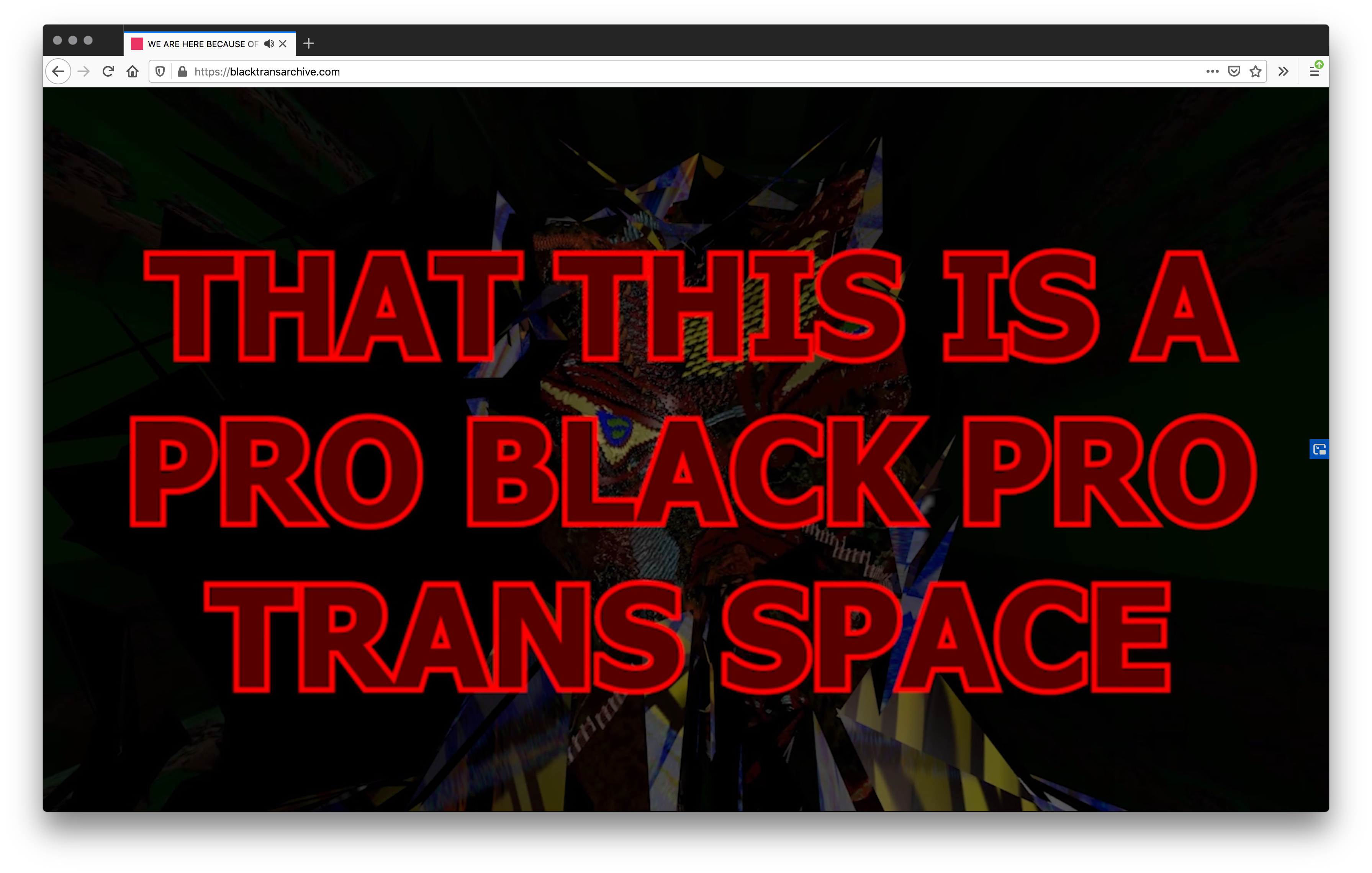
Screenshot, 2020, Firefox v76.0.1 on Mac OS 10.13.3; https://blacktransarchive.com/

Screenshot, 2020, Firefox v76.0.1 on Mac OS 10.13.3; https://blacktransarchive.com/
WE ARE HERE BECAUSE OF THOSE
THAT ARE NOT
WELCOME TO THE
PRO BLACK PRO TRANS ARCHIVE
THIS INTERACTIVE ARCHIVE WAS
MADE TO STORE AND CENTRE BLACK
TRANS PEOPLE [page "Trapped by the body? Telepresence Technologies and Transgendered Performance in Feminist and Lesbian Rewritings of Cyberpunk Fiction" not found]
TO PRESERVE
OUR EXPERIENCES
OUR THOUGHTS
OUR FEELINGS
OUR LIVES
TO REMEMBER US EVEN WHEN WE
ARE AT RISK OF BEING ERASED
YOUR OWN IDENTITY WILL
DETERMINE HOW YOU CAN INTERACT
WITH THE ARCHIVE (x)
AS WELL AS WHAT YOU WILL BE ABLE
TO ACCESS
BE HONEST WITH THE ARCHIVE
2020, Danielle Brathwaite Shirley, https://blacktransarchive.com/; referred by Legacy Russell
referred by Legacy Russell
https://www.daniellebrathwaiteshirley.com/

Screenshot, 2020, Firefox v76.0.1 on Mac OS 10.13.3; https://blacktransarchive.com/
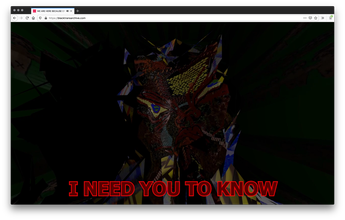
Screenshot, 2020, Firefox v76.0.1 on Mac OS 10.13.3; https://blacktransarchive.com/

Screenshot, 2020, Firefox v76.0.1 on Mac OS 10.13.3; https://blacktransarchive.com/

Screenshot, 2020, Firefox v76.0.1 on Mac OS 10.13.3; https://blacktransarchive.com/
(790)
2020
Taking Sides: Theories, Practices, and Cultures of Participation in Dissent
Elke Bippus, Anne Ganzert, Isabell Otto
Is there an option to oppose without automatically participating in the opposed? This volume explores different perspectives on dissent, (63) understanding practices, cultures, and theories of resistance, dispute, and opposition as inherently participative. It discusses aspects of the body as a political instance, the identity and subjectivity building of individuals and groups, (micro-)practices of dissent, and theories of critique from different disciplinary perspectives. This collection thus touches upon contemporary issues, recent protests and movements, artistic subversion and dissent, online activism as well as historic developments and elemental theories of dissent.
2020, Elke Bippus, Anne Ganzert, and Isabell Otto, eds. (Bielefeld, Germany: Transcript Verlag, 2020); excerpt from Transcript Verlag; referred by Cornelia Sollfrank
https://www.transcript-verlag.de/978-3-8376-4901-7/taking-sides/
Is there an option to oppose without automatically participating in the opposed? This volume explores different perspectives on dissent, (63) understanding practices, cultures, and theories of resistance, dispute, and opposition as inherently participative. It discusses aspects of the body as a political instance, the identity and subjectivity building of individuals and groups, (micro-)practices of dissent, and theories of critique from different disciplinary perspectives. This collection thus touches upon contemporary issues, recent protests and movements, artistic subversion and dissent, online activism as well as historic developments and elemental theories of dissent.
2020, Elke Bippus, Anne Ganzert, and Isabell Otto, eds. (Bielefeld, Germany: Transcript Verlag, 2020); excerpt from Transcript Verlag; referred by Cornelia Sollfrank
https://www.transcript-verlag.de/978-3-8376-4901-7/taking-sides/
(791)
2020
Black Meme
Legacy Russell
“Memes are not neutral. The labor enacted through black meme culture raises questions about subjectivity, personhood, and the ever-complicated fault lines of race, class, and gender performed both on- and offline. I want to talk about the economy and engine of this and perhaps push further a discussion about how we can hold ourselves accountable to how this material is produced and circulated.” —Legacy Russell
Situated on a 3D interactive laptop which hovers against a black background, the video begins with the question “what is a black meme?” typed into Blackle, a website first launched by Google in 2007 that aims to save energy by displaying a black background. Working backwards in time from Beyoncé’s 2016 song “Formation,” key references include Rodney King’s 1991 beating at the hands of the LAPD, the documentation of which came to be known as the world’s “first viral video”; Michael Jackson’s legendary 1983 music video “Thriller”; and the 1913 film “Lime Kiln Field Day,” celebrated as the oldest surviving film to feature black actors. Over its 20 min 51 sec duration, through pacing, distortion and abrupt edits, Russell weaves a considered and unexpected story of black culture (179) and its impact on the Internet meme as we now know it.
2020, Legacy Russell, External Pages, https://externalpages.org/#legacyrussell

video still of “Black Meme” from External Pages; Screenshot May 12, 2021, Firefox v88.0.1 on Mac OS 10.15.7; https://externalpages.org/legacy-russell/black-meme.html
“Memes are not neutral. The labor enacted through black meme culture raises questions about subjectivity, personhood, and the ever-complicated fault lines of race, class, and gender performed both on- and offline. I want to talk about the economy and engine of this and perhaps push further a discussion about how we can hold ourselves accountable to how this material is produced and circulated.” —Legacy Russell
Situated on a 3D interactive laptop which hovers against a black background, the video begins with the question “what is a black meme?” typed into Blackle, a website first launched by Google in 2007 that aims to save energy by displaying a black background. Working backwards in time from Beyoncé’s 2016 song “Formation,” key references include Rodney King’s 1991 beating at the hands of the LAPD, the documentation of which came to be known as the world’s “first viral video”; Michael Jackson’s legendary 1983 music video “Thriller”; and the 1913 film “Lime Kiln Field Day,” celebrated as the oldest surviving film to feature black actors. Over its 20 min 51 sec duration, through pacing, distortion and abrupt edits, Russell weaves a considered and unexpected story of black culture (179) and its impact on the Internet meme as we now know it.
2020, Legacy Russell, External Pages, https://externalpages.org/#legacyrussell
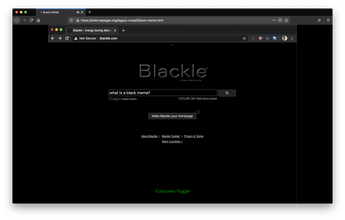
video still of “Black Meme” from External Pages; Screenshot May 12, 2021, Firefox v88.0.1 on Mac OS 10.15.7; https://externalpages.org/legacy-russell/black-meme.html
(792)
2020
Underneath and on the Sidelines: Sustaining Feminist Infrastructures Using Speculative Fiction
Spideralex
By feminist infrastructures we mean feminist struggles—everything that is sustained and shored up by more or less stable resources—so they can develop and move forward. By resources we mean techniques, technologies and processes (analogue, digital, social) including safe spaces, shelters, libraries, trustworthy sister-hood networks, servers, yellow pages, repositories, bots, documentation and memory tools, encyclopaedias, HerStories, techniques for life,spells, rituals and exorcisms. They also include the mobile, ephemeral and transitional that can be found in the temporary infrastructure of meetings, workshops and parties that nurture the trust, affection and well-being of our fellow feminists.
We believe that the feminist infrastructure,which is found underneath and on the sidelines, is often precarious and sometimes difficult to see. But it is widespread and disseminated, and at its core is the value and affection that the people, machines and ecosystems that constitute it offer each other.
2020, Spideralex (Alex Hache), https://iterations.space/uploads/iterations-spideralex-underneath-and-on-the-sidelines.pdf; excerpt p. 6
By feminist infrastructures we mean feminist struggles—everything that is sustained and shored up by more or less stable resources—so they can develop and move forward. By resources we mean techniques, technologies and processes (analogue, digital, social) including safe spaces, shelters, libraries, trustworthy sister-hood networks, servers, yellow pages, repositories, bots, documentation and memory tools, encyclopaedias, HerStories, techniques for life,spells, rituals and exorcisms. They also include the mobile, ephemeral and transitional that can be found in the temporary infrastructure of meetings, workshops and parties that nurture the trust, affection and well-being of our fellow feminists.
We believe that the feminist infrastructure,which is found underneath and on the sidelines, is often precarious and sometimes difficult to see. But it is widespread and disseminated, and at its core is the value and affection that the people, machines and ecosystems that constitute it offer each other.
2020, Spideralex (Alex Hache), https://iterations.space/uploads/iterations-spideralex-underneath-and-on-the-sidelines.pdf; excerpt p. 6
(793)
2020
Tecnoafecciones
Nadia Cortés, la jes, Paola Ricaurte
Para nosotras, las tecnologías no son artefacto suobjetos. Las tecnologías son dispositivos relacionales. Nos tejen y las tejemos. Se construyen y se incorporan desde la matriz dela afectividad. Por eso queremos pensar la tecnología indisociable de nuestras emociones, nuestros afectos, los cuidados, la vida en comunidad y la vida en el planeta.
Asumiendounaposturaresponsable, buscamosser sensibles a las afectaciones que provocamos en nuestros cuerpos, en los cuerpos de otras y en la corporeidad de lo que denominamos naturaleza. Si despolitizar es desafectar las relaciones, nuestro propósito es politizar a través de los afectos y las afectaciones.
Así, proponemos vivir la tecnología como una trama de relaciones tejidas por las afectaciones y los afectos. Creemos que es necesario replantearnos la naturaleza ontológica de los sistemas socio-técnicos como una continuidad de la experiencia encarnada y situada en los afectos, los cuerpos y los territorios. Queremos interpelar los preconceptos que incorporamos en nuestras prácticas y micro-decisiones cotidianas.
For us, technologies are not artifacts or objects. Technologies are relational devices. They weave and weave them. They are built and incorporated from the matrix of affectivity. But we will think about the inseparable technology of our emotions, our affects, care, community life and life on the planet.
Assuming a responsible posture, we seek to be sensitive to the effects that we provoke on our bodies, on the bodies of others, and on the body of what we call nature.
Thus, we propose to live technology as a network of relationships woven by the effects and the effects. We believe that it is necessary to rethink the ethical nature of the socio-technical systems as a continuity of the experience incarnate and situated in the effects, the bodies and the territories. (auto-translated, needs to be edited)
excerpt from Introduction p.5
submitted by Paola Ricaurte
https://archive.org/download/tecnoafecciones-web https://ia601809.us.archive.org/28/items/tecnoafecciones-web/Tecnoafecciones_web.pdf
Para nosotras, las tecnologías no son artefacto suobjetos. Las tecnologías son dispositivos relacionales. Nos tejen y las tejemos. Se construyen y se incorporan desde la matriz dela afectividad. Por eso queremos pensar la tecnología indisociable de nuestras emociones, nuestros afectos, los cuidados, la vida en comunidad y la vida en el planeta.
Asumiendounaposturaresponsable, buscamosser sensibles a las afectaciones que provocamos en nuestros cuerpos, en los cuerpos de otras y en la corporeidad de lo que denominamos naturaleza. Si despolitizar es desafectar las relaciones, nuestro propósito es politizar a través de los afectos y las afectaciones.
Así, proponemos vivir la tecnología como una trama de relaciones tejidas por las afectaciones y los afectos. Creemos que es necesario replantearnos la naturaleza ontológica de los sistemas socio-técnicos como una continuidad de la experiencia encarnada y situada en los afectos, los cuerpos y los territorios. Queremos interpelar los preconceptos que incorporamos en nuestras prácticas y micro-decisiones cotidianas.
For us, technologies are not artifacts or objects. Technologies are relational devices. They weave and weave them. They are built and incorporated from the matrix of affectivity. But we will think about the inseparable technology of our emotions, our affects, care, community life and life on the planet.
Assuming a responsible posture, we seek to be sensitive to the effects that we provoke on our bodies, on the bodies of others, and on the body of what we call nature.
Thus, we propose to live technology as a network of relationships woven by the effects and the effects. We believe that it is necessary to rethink the ethical nature of the socio-technical systems as a continuity of the experience incarnate and situated in the effects, the bodies and the territories. (auto-translated, needs to be edited)
excerpt from Introduction p.5
submitted by Paola Ricaurte
https://archive.org/download/tecnoafecciones-web https://ia601809.us.archive.org/28/items/tecnoafecciones-web/Tecnoafecciones_web.pdf
(794)
2020
Nos permitimos imaginar [We allow ourselves to imagine]
Paola Ricaurte Quijano, Nadia Cortés, Irene Soria Guzmán, Amaranta Cornejo Flernández, Vero Araiza, ValeVale, Anamhoo, Firuzeh Shokoo-Valle, Elyaneth, San Gayou, Stefanía Acevedo, Alma Martínez/Rosaura Zapata, Guiomar Rovira, Poulette Flernández, March Bermúdez, Mónica Nepote, la_jes, Mariel Zasso, Fera Briones/Chavela Goldman, Lili Ayuujk
Las páginas que nos aguardan son a su modo una constelación. Más allá de la metáfora, este es un libro que se sigue sentipensando. No está fijo ni terminado porque es un tejido continuo. Las reflexiones que aquí se comparten siguen tramándose y enfatizan pensamiento crítico en torno a la tecnología pero también se preguntan por lo que entendemos como tal: ¿Qué tan absoluta es la tecnología? ¿Qué tan maleable? ¿Qué tan susceptible a ser hacekada/reconfigurada por nosotras, desde nuestras perspectivas, desde el ser mujeres de diversos países, alejadas de los centros de producción hegemónicos? […]
Los textos surgieron a partir del Encuentro hackfeministo tecnología y afectos: ¿Cómo bosquejar políticas de la ca-responsabilidad? y fueron compartidos, leídos y comentados por todas, anotados, sugeridos y encarnados. Fueron desplegados en diversas posibilidades de entramarse hasta cobrar esta forma, que debe entenderse tan solo como una propuesta porque los caminos de este libro son tan variados, ricos y polimorfos como sus escritoras.
The pages that await us are in their own way a constellation. Beyond the metaphor, this is a book you keep thinking about. It is neither fixed nor finished because it is a continuous fabric. The reflections shared here follow plotting and emphasize critical thinking around technology but they also wonder about what we understand as such: How absolute is the technology? How malleable? How susceptible to be hacked / reconfigured by us, (666) from our perspective, from women from different countries, far from the hegemonic centers of production?
The texts arose from Hackfeminist Technology: How do we draft co-responsibility policies? They were shared, read and commented on by all, annotated, suggested and embodied. They were deployed in various possibilities and woven into a collective form, which should be understood only as a proposal through its paths. This book is as varied, rich, and polymorphous as its writers.
2020, Paola Ricaurte Quijano, Nadia Cortés, Irene Soria Guzmán, Amaranta Cornejo Flernández, Vero Araiza, ValeVale, Anamhoo, Firuzeh Shokoo-Valle, Elyaneth, San Gayou, Stefanía Acevedo, Alma Martínez (Rosaura Zapata), Guiomar Rovira, Poulette Flernández, March Bermúdez, Mónica Nepote, la jes, Mariel Zasso, Fera Briones (Chavela Goldman), and Lili Ayuujk, https://ia801805.us.archive.org/32/items/nos-permitimos-imaginar-web/NosPermitimosImaginar_djvu.txt; submitted by Paola Ricaurte
https://archive.org/download/nos-permitimos-imaginar-web
Las páginas que nos aguardan son a su modo una constelación. Más allá de la metáfora, este es un libro que se sigue sentipensando. No está fijo ni terminado porque es un tejido continuo. Las reflexiones que aquí se comparten siguen tramándose y enfatizan pensamiento crítico en torno a la tecnología pero también se preguntan por lo que entendemos como tal: ¿Qué tan absoluta es la tecnología? ¿Qué tan maleable? ¿Qué tan susceptible a ser hacekada/reconfigurada por nosotras, desde nuestras perspectivas, desde el ser mujeres de diversos países, alejadas de los centros de producción hegemónicos? […]
Los textos surgieron a partir del Encuentro hackfeministo tecnología y afectos: ¿Cómo bosquejar políticas de la ca-responsabilidad? y fueron compartidos, leídos y comentados por todas, anotados, sugeridos y encarnados. Fueron desplegados en diversas posibilidades de entramarse hasta cobrar esta forma, que debe entenderse tan solo como una propuesta porque los caminos de este libro son tan variados, ricos y polimorfos como sus escritoras.
The pages that await us are in their own way a constellation. Beyond the metaphor, this is a book you keep thinking about. It is neither fixed nor finished because it is a continuous fabric. The reflections shared here follow plotting and emphasize critical thinking around technology but they also wonder about what we understand as such: How absolute is the technology? How malleable? How susceptible to be hacked / reconfigured by us, (666) from our perspective, from women from different countries, far from the hegemonic centers of production?
The texts arose from Hackfeminist Technology: How do we draft co-responsibility policies? They were shared, read and commented on by all, annotated, suggested and embodied. They were deployed in various possibilities and woven into a collective form, which should be understood only as a proposal through its paths. This book is as varied, rich, and polymorphous as its writers.
2020, Paola Ricaurte Quijano, Nadia Cortés, Irene Soria Guzmán, Amaranta Cornejo Flernández, Vero Araiza, ValeVale, Anamhoo, Firuzeh Shokoo-Valle, Elyaneth, San Gayou, Stefanía Acevedo, Alma Martínez (Rosaura Zapata), Guiomar Rovira, Poulette Flernández, March Bermúdez, Mónica Nepote, la jes, Mariel Zasso, Fera Briones (Chavela Goldman), and Lili Ayuujk, https://ia801805.us.archive.org/32/items/nos-permitimos-imaginar-web/NosPermitimosImaginar_djvu.txt; submitted by Paola Ricaurte
https://archive.org/download/nos-permitimos-imaginar-web
(795)
2020
Tecnoafecciones: Por una política de la co-responsabilidad [Techno-Affections: For a Policy of Co-responsibility]
Paola Ricaurte, Nadia Cortés, la_jes, Poulette Fernández, Liliana Heber Pérez-Díaz
Para nosotras, las tecnologías no son artefacto su objetos. Las tecnologías son dispositivos relacionales. Nos tejen y las tejemos. Se construyen y se incorporan desde la matriz de la afectividad. Por eso queremos pensar la tecnología indisociable de nuestras emociones, nuestros afectos, los cuidados, la vida en comunidad y la vida en el planeta.
Asumiendo una postura responsable, busca mosser sensibles a las afectaciones que provocamos en nuestros cuerpos, en los cuerpos de otras y en la corporeidad de lo que denominamos naturaleza. Si despolitizar es desafectar las relaciones, nuestro propósito es politizar a través de los afectos y las afectaciones.
Así, proponemos vivir la tecnología como una trama de relaciones tejidas por las afectaciones y los afectos. Creemos que es necesario replantearnos la naturaleza ontológica de los sistemas socio-técnicos como una continuidad de la experiencia encarnada y situada en los afectos, los cuerpos y los territorios. Queremos interpelar los preconceptos que incorporamos en nuestras prácticas y micro-decisiones cotidianas.
For us, technologies are not artifacts or objects. Technologies are relational devices. They weave us and we weave them. (43) They are built and incorporated from the matrix of affectivity. But we will think about the inseparable technology of our emotions, our affects, care, community life and life on the planet.
Assuming a responsible posture, we seek to be sensitive to the effects that we provoke on our bodies, on the bodies of others, and on the body of what we call nature.
Thus, we propose to live technology as a network of relationships woven by the affects and the effects. We believe that it is necessary to rethink the ethical nature of the socio-technical systems as a continuity of the experience incarnate and situated in the effects, the bodies and the territories.
2020, Nadia K. Cortés Lagunas, Paola Ricaurte Quijano, la_jes, Poulette Hernández, and Liliana Heber Pérez-Díaz (México: Instituto de Liderazgo Simone de Beauvoir A.C., 2020); excerpt p. 5; submitted by Paola Ricaurte
https://archive.org/download/tecnoafecciones-web https://ia801809.us.archive.org/28/items/tecnoafecciones-web/Tecnoafecciones_web_djvu.txt
Para nosotras, las tecnologías no son artefacto su objetos. Las tecnologías son dispositivos relacionales. Nos tejen y las tejemos. Se construyen y se incorporan desde la matriz de la afectividad. Por eso queremos pensar la tecnología indisociable de nuestras emociones, nuestros afectos, los cuidados, la vida en comunidad y la vida en el planeta.
Asumiendo una postura responsable, busca mosser sensibles a las afectaciones que provocamos en nuestros cuerpos, en los cuerpos de otras y en la corporeidad de lo que denominamos naturaleza. Si despolitizar es desafectar las relaciones, nuestro propósito es politizar a través de los afectos y las afectaciones.
Así, proponemos vivir la tecnología como una trama de relaciones tejidas por las afectaciones y los afectos. Creemos que es necesario replantearnos la naturaleza ontológica de los sistemas socio-técnicos como una continuidad de la experiencia encarnada y situada en los afectos, los cuerpos y los territorios. Queremos interpelar los preconceptos que incorporamos en nuestras prácticas y micro-decisiones cotidianas.
For us, technologies are not artifacts or objects. Technologies are relational devices. They weave us and we weave them. (43) They are built and incorporated from the matrix of affectivity. But we will think about the inseparable technology of our emotions, our affects, care, community life and life on the planet.
Assuming a responsible posture, we seek to be sensitive to the effects that we provoke on our bodies, on the bodies of others, and on the body of what we call nature.
Thus, we propose to live technology as a network of relationships woven by the affects and the effects. We believe that it is necessary to rethink the ethical nature of the socio-technical systems as a continuity of the experience incarnate and situated in the effects, the bodies and the territories.
2020, Nadia K. Cortés Lagunas, Paola Ricaurte Quijano, la_jes, Poulette Hernández, and Liliana Heber Pérez-Díaz (México: Instituto de Liderazgo Simone de Beauvoir A.C., 2020); excerpt p. 5; submitted by Paola Ricaurte
https://archive.org/download/tecnoafecciones-web https://ia801809.us.archive.org/28/items/tecnoafecciones-web/Tecnoafecciones_web_djvu.txt
(796)
2020
Hacking Diversity: The Politics of Inclusion in Open Technology Cultures
Christina Dunbar-Hester
At the heart of this book lies the question: What happens when ordinary people try to define and tackle a large social problem? Tough open-technology communities possess features different from the culture at large, they nevertheless constitute a laboratory for the voluntaristic address of social inequality. One special feature is, of course, their orientation around technology, which means they are beholden to the cultural legacies of computing and engineering in important ways. Another is their level of commitment to self-governance and autonomy. The hacker ethic (252) includes a devotion to hands-on problem solving, which, this book argues, has led to open-technology enthusiasts trying to hack their communities in real time. In other words, some have addressed their communities with an approach that can be characterized as, Hey, our culture is informal and constituted by shared interest in taking things apart and putting them back together again, so how hard could it be to change?
2020, Christina Dunbar-Hester (Princeton, NJ: Princeton University Press, 2020); excerpt pp. 3–4; submitted by Christina Dunbar-Hester
https://press.princeton.edu/books/paperback/9780691192888/hacking-diversity
At the heart of this book lies the question: What happens when ordinary people try to define and tackle a large social problem? Tough open-technology communities possess features different from the culture at large, they nevertheless constitute a laboratory for the voluntaristic address of social inequality. One special feature is, of course, their orientation around technology, which means they are beholden to the cultural legacies of computing and engineering in important ways. Another is their level of commitment to self-governance and autonomy. The hacker ethic (252) includes a devotion to hands-on problem solving, which, this book argues, has led to open-technology enthusiasts trying to hack their communities in real time. In other words, some have addressed their communities with an approach that can be characterized as, Hey, our culture is informal and constituted by shared interest in taking things apart and putting them back together again, so how hard could it be to change?
2020, Christina Dunbar-Hester (Princeton, NJ: Princeton University Press, 2020); excerpt pp. 3–4; submitted by Christina Dunbar-Hester
https://press.princeton.edu/books/paperback/9780691192888/hacking-diversity
(797)
2020
Really Fake
Alexandra Juhasz, Ganaele Langois, Nishant Shah
Unlike critical internet studies writ large or its burgeoning set of digital methods, cyberfeminism, like many feminisms (and there are many), puts our goals, processes, and bodies first: research in service of making and changing the world, and the internet, for ourselves, feminists, and others. Learned from those before and with me (Sayers 2018; Zarzycka and Olivieri 2017), my cyberfeminism is first and foremost a method of doing well and for the better (Ahmed 2016; Gajjala 2019). It is hard to do (well) but easy enough to name (Fernández 2002 (206); Daniels 2009), and naming it up front is part of its best practices (@riotmango; Subrosa). Mine is situated: attending to the specificity of its place, time, and author(s) (Carpio 2019; Harpold and Philip 2010); and in this way committed: serving and driven by self- and world-changing goals (Losh and Wernimont 2018); connected and interactive: rooted in what humans and machines can build and do collectively (Braidotti 2012; Cardenas 2012); and ethical: while always attending to intensity and control between people and technologies (Laurel 2003; Nelson 2016); and thus rooted in care (McLeod, Rault, and Cowan 2014; Fotopoulou, Juhasz, and O’Riordan 2014), given all the attendant violence (Malkowski and Russworm 2017; FemTechNet (349)).
2020, Alexandra Juhasz, Ganaele Langois, Nishant Shah (Minneapolis, MN: University of Minnesota Press, 2020); excerpt p. 12; submitted by Alexandra Juhasz
https://www.upress.umn.edu/book-division/books/really-fake
Unlike critical internet studies writ large or its burgeoning set of digital methods, cyberfeminism, like many feminisms (and there are many), puts our goals, processes, and bodies first: research in service of making and changing the world, and the internet, for ourselves, feminists, and others. Learned from those before and with me (Sayers 2018; Zarzycka and Olivieri 2017), my cyberfeminism is first and foremost a method of doing well and for the better (Ahmed 2016; Gajjala 2019). It is hard to do (well) but easy enough to name (Fernández 2002 (206); Daniels 2009), and naming it up front is part of its best practices (@riotmango; Subrosa). Mine is situated: attending to the specificity of its place, time, and author(s) (Carpio 2019; Harpold and Philip 2010); and in this way committed: serving and driven by self- and world-changing goals (Losh and Wernimont 2018); connected and interactive: rooted in what humans and machines can build and do collectively (Braidotti 2012; Cardenas 2012); and ethical: while always attending to intensity and control between people and technologies (Laurel 2003; Nelson 2016); and thus rooted in care (McLeod, Rault, and Cowan 2014; Fotopoulou, Juhasz, and O’Riordan 2014), given all the attendant violence (Malkowski and Russworm 2017; FemTechNet (349)).
2020, Alexandra Juhasz, Ganaele Langois, Nishant Shah (Minneapolis, MN: University of Minnesota Press, 2020); excerpt p. 12; submitted by Alexandra Juhasz
https://www.upress.umn.edu/book-division/books/really-fake
(798)
2020
Ciberbrigadistas contra violencias en internet [Cyberbrigadistas against Violence on the Internet]
S.O.S. Digital
Durante el 2019, como colectivo SOS Digital hemos acompañado a mujeres en aspectos variados de seguridad digital (472) y documentado sus casos de violencia. Son más de 200 mujeres en La Paz, El Alto, Cochabamba y Santa Cruz que nos contaron sus luchas, miedos y deseos. Hemos presenciado estos ataques que tienen consecuencias económicas y sociales.
Hemos aprendido, a través de las experiencias de estas mujeres, que los ataques personales, coordinados y planificados en un intento de censurar, amedrentar y atacar a otras libertades como acceso a información y privacidad. Quienes las atacan lo hacen mediante intentos de hackeo, amenazas, discurso de odio, publicación de información personal e infiltraciones para aplicar ingeniería social. Las víctimas, más atacadas, son mujeres de perfil público: académicas, artistas, anarquistas, periodistas, aborteras, activistas, mujeres que se defienden y escriben desde las zonas de conflicto y, por supuesto, ciberfeministas.
During 2019, as the collective SOS Digital we have accompanied women in various aspects of digital security and documented their cases of violence. There are more than 200 women in La Paz, El Alto, Cochabamba and Santa Cruz who told us about their struggles, fears and desires. We have witnessed these attacks that have economic and social consequences.
We have learned, through the experiences of these women, that personal attacks, coordinated and planned in an attempt to censor, intimidate and attack other freedoms such as access to information and privacy. Those who attack them do so through hacking attempts, threats, hate speech, publication of personal information and infiltrations to apply social engineering. The victims, most attacked, are women with a public profile: academics, artists, anarchists, journalists, abortionists, activists, women who defend themselves and write from conflict zones and, of course, cyberfeminists.
2020, SOS Digital; excerpt from SOS Digital, “Ciberfeminicidio: reflexiones desde el ciberfeminismo boliviano,” March 9, 2020, https://sosdigital.noblogs.org/reflexiones-desde-el-ciberfeminismo-boliviano/; submitted by Cielito Saravia
https://sosdigital.noblogs.org/
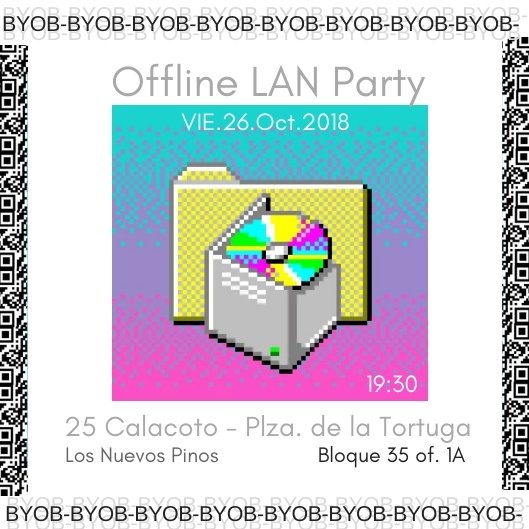
“Offline LAN Party,” image from email
Durante el 2019, como colectivo SOS Digital hemos acompañado a mujeres en aspectos variados de seguridad digital (472) y documentado sus casos de violencia. Son más de 200 mujeres en La Paz, El Alto, Cochabamba y Santa Cruz que nos contaron sus luchas, miedos y deseos. Hemos presenciado estos ataques que tienen consecuencias económicas y sociales.
Hemos aprendido, a través de las experiencias de estas mujeres, que los ataques personales, coordinados y planificados en un intento de censurar, amedrentar y atacar a otras libertades como acceso a información y privacidad. Quienes las atacan lo hacen mediante intentos de hackeo, amenazas, discurso de odio, publicación de información personal e infiltraciones para aplicar ingeniería social. Las víctimas, más atacadas, son mujeres de perfil público: académicas, artistas, anarquistas, periodistas, aborteras, activistas, mujeres que se defienden y escriben desde las zonas de conflicto y, por supuesto, ciberfeministas.
During 2019, as the collective SOS Digital we have accompanied women in various aspects of digital security and documented their cases of violence. There are more than 200 women in La Paz, El Alto, Cochabamba and Santa Cruz who told us about their struggles, fears and desires. We have witnessed these attacks that have economic and social consequences.
We have learned, through the experiences of these women, that personal attacks, coordinated and planned in an attempt to censor, intimidate and attack other freedoms such as access to information and privacy. Those who attack them do so through hacking attempts, threats, hate speech, publication of personal information and infiltrations to apply social engineering. The victims, most attacked, are women with a public profile: academics, artists, anarchists, journalists, abortionists, activists, women who defend themselves and write from conflict zones and, of course, cyberfeminists.
2020, SOS Digital; excerpt from SOS Digital, “Ciberfeminicidio: reflexiones desde el ciberfeminismo boliviano,” March 9, 2020, https://sosdigital.noblogs.org/reflexiones-desde-el-ciberfeminismo-boliviano/; submitted by Cielito Saravia
https://sosdigital.noblogs.org/
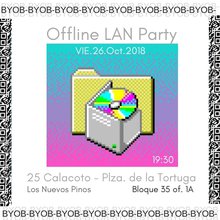
“Offline LAN Party,” image from email
(799)
2020
Glitch Feminism: A Manifesto
Legacy Russell
We use “body” to give material form to an idea that has no form, an assemblage that is abstract. The concept of a body houses within it social, political, and cultural discourses, which change based on where the body is situated and how it is read. When we gender a body, we are making assumptions about the body’s function, its sociopolitical condition, its fixity. When the body is determined as a male or female individual, the body performs gender as its score, guided by a set of rules and requirements that validate and verify the humanity of that individual. A body that pushes back at the application of pronouns, or remains indecipherable within binary assignment, is a body that refuses to perform the score. This nonperformance is a glitch. (369) This glitch is a form of refusal.
Within glitch feminism, glitch is celebrated as a vehicle of refusal, a strategy of nonperformance. […] In glitch feminism, we look at the notion of glitch-as-error with its genesis in the realm of the machinic and the digital and consider how it can be reapplied to inform the way we see the AFK world, shaping how we might participate in it toward greater agency for and by ourselves.
2020, Legacy Russell (Brooklyn: Verso, 2020); excerpt pp. 8–9
https://www.versobooks.com/books/3668-glitch-feminism
We use “body” to give material form to an idea that has no form, an assemblage that is abstract. The concept of a body houses within it social, political, and cultural discourses, which change based on where the body is situated and how it is read. When we gender a body, we are making assumptions about the body’s function, its sociopolitical condition, its fixity. When the body is determined as a male or female individual, the body performs gender as its score, guided by a set of rules and requirements that validate and verify the humanity of that individual. A body that pushes back at the application of pronouns, or remains indecipherable within binary assignment, is a body that refuses to perform the score. This nonperformance is a glitch. (369) This glitch is a form of refusal.
Within glitch feminism, glitch is celebrated as a vehicle of refusal, a strategy of nonperformance. […] In glitch feminism, we look at the notion of glitch-as-error with its genesis in the realm of the machinic and the digital and consider how it can be reapplied to inform the way we see the AFK world, shaping how we might participate in it toward greater agency for and by ourselves.
2020, Legacy Russell (Brooklyn: Verso, 2020); excerpt pp. 8–9
https://www.versobooks.com/books/3668-glitch-feminism
(800)
2020
DigitalFems
Thais Ruiz de Alda
Somos una entidad que diseña proyectos para aumentar la presencia de mujeres en entornos tecnológicos […] Creemos que para el buen diseño de productos y servicios tecnológicos es necesario contar con equipos plurales y diversos. La tecnología que cuenta con perspectivas diferentes es más justa y más eficaz. Por eso, trabajamos en el diseño de servicios que incluyan más mujeres en entornos tech y en la creación de productos que muestran el talento de mujeres tecnóloga
We are an entity that designs projects to increase the presence of women in technological environments. (13) […] We believe that for good design of technological products and services it is necessary to have plural and diverse teams. Technology that has different perspectives is fairer and more efficient. For this reason, we work on the design of services that include more women in tech environments and on the creation of products that show the talent of women technologists.
2020, Thais Ruiz de Alda, http://digitalfems.org
Somos una entidad que diseña proyectos para aumentar la presencia de mujeres en entornos tecnológicos […] Creemos que para el buen diseño de productos y servicios tecnológicos es necesario contar con equipos plurales y diversos. La tecnología que cuenta con perspectivas diferentes es más justa y más eficaz. Por eso, trabajamos en el diseño de servicios que incluyan más mujeres en entornos tech y en la creación de productos que muestran el talento de mujeres tecnóloga
We are an entity that designs projects to increase the presence of women in technological environments. (13) […] We believe that for good design of technological products and services it is necessary to have plural and diverse teams. Technology that has different perspectives is fairer and more efficient. For this reason, we work on the design of services that include more women in tech environments and on the creation of products that show the talent of women technologists.
2020, Thais Ruiz de Alda, http://digitalfems.org
(801)
2020
Rock Repo: Trans*feminist scanning practices for geocomputation
Helen Pritchard, Jara Rocha, Femke Snelting
With this collection of computational ROCKS, The Underground Division gets closer to the unstable stories of particular ROCKS as told through scientific, poetic, public and technological discourse. Recognising that ROCKS have their own lively forces and relationalities, the Division studies ROCKS’ 3D imaginings, the softwares and hardwares that ROCKS intervene on and builds new glossaries on the go. […] As an ongoing inquiry into what ROCK is, the REPO asks what ROCKS could be and in which ways ROCK is seen or considered as an entity separate from its environment. […] Sharpened by queer and anticolonial sensibilities, the Division investigates the way undergrounds are quarried, measured, quantified, historicized, visualized, circulated, predicted, classified, remembered and modelled. […] The ROCK REPO is a device built by a team of transfeminist (567) post-normal scientists for thinking with ROCK. […] The REPO inquires into these banal, exquisite, violent, static, carbonivourous figurations to fracture the normative 3D processes of geocomputation and their crushing exploitations and extractions.
2020, The Underground Division (Helen Pritchard, Jara Rocha, and Femke Snelting), http://ddivision.xyz/rockrepo/#more; submitted by The Underground Division (Helen Pritchard, Jara Rocha, Femke Snelting)
http://ddivision.xyz/rockrepo/files/rockrepoindex.pdf
With this collection of computational ROCKS, The Underground Division gets closer to the unstable stories of particular ROCKS as told through scientific, poetic, public and technological discourse. Recognising that ROCKS have their own lively forces and relationalities, the Division studies ROCKS’ 3D imaginings, the softwares and hardwares that ROCKS intervene on and builds new glossaries on the go. […] As an ongoing inquiry into what ROCK is, the REPO asks what ROCKS could be and in which ways ROCK is seen or considered as an entity separate from its environment. […] Sharpened by queer and anticolonial sensibilities, the Division investigates the way undergrounds are quarried, measured, quantified, historicized, visualized, circulated, predicted, classified, remembered and modelled. […] The ROCK REPO is a device built by a team of transfeminist (567) post-normal scientists for thinking with ROCK. […] The REPO inquires into these banal, exquisite, violent, static, carbonivourous figurations to fracture the normative 3D processes of geocomputation and their crushing exploitations and extractions.
2020, The Underground Division (Helen Pritchard, Jara Rocha, and Femke Snelting), http://ddivision.xyz/rockrepo/#more; submitted by The Underground Division (Helen Pritchard, Jara Rocha, Femke Snelting)
http://ddivision.xyz/rockrepo/files/rockrepoindex.pdf
(802)
2020
Cyberfeminist Art as a Medium of Political Expression: Producing and Communicating a Post-cyberfeminist Artwork for Social Change
Lydia Tranta
The purpose of this thesis is to examine the interconnections between new media art and politics, with a view to creating paths for social change. By focusing on cyberfeminist art, (338) in particular, we explore its critical and emancipatory potentialities, as well as its participatory practice, and we come up with a conclusion that this form of expression can be seen as a means for creating fragments in the dominant system of power and forge spaces for rebellion against the contemporary networks of domination, oppression and exploitation. New forms of (political) communication have emerged in modern times. Cultural critics call it “postmodernism,” sociologists and political theorists perceive it as the “post-industrial” era, whereas anthropologists focusing on the effects of anthropocentrism over the environment human inhabit refer to it as “posthumanism.” No matter the term, it is indisputable that we are living in the era of information, which, thanks to digital technology, is operating at a very high speed and has reorganized former spatiotemporal fixes, making the whole world a global community.
2020, Lydia Tranta (Master’s thesis, International Hellenic University, 2020), excerpt p. 1; submitted by Lydia Tranta
The purpose of this thesis is to examine the interconnections between new media art and politics, with a view to creating paths for social change. By focusing on cyberfeminist art, (338) in particular, we explore its critical and emancipatory potentialities, as well as its participatory practice, and we come up with a conclusion that this form of expression can be seen as a means for creating fragments in the dominant system of power and forge spaces for rebellion against the contemporary networks of domination, oppression and exploitation. New forms of (political) communication have emerged in modern times. Cultural critics call it “postmodernism,” sociologists and political theorists perceive it as the “post-industrial” era, whereas anthropologists focusing on the effects of anthropocentrism over the environment human inhabit refer to it as “posthumanism.” No matter the term, it is indisputable that we are living in the era of information, which, thanks to digital technology, is operating at a very high speed and has reorganized former spatiotemporal fixes, making the whole world a global community.
2020, Lydia Tranta (Master’s thesis, International Hellenic University, 2020), excerpt p. 1; submitted by Lydia Tranta
(803)
2020
Alternative Energy
Alexandra Neuman
Alternative Energy features a giant and all-knowing oracle, it is a site-specific attempt to smear vaginal power across the phallic landscape. Within a dominator value system, the imposition of physical and spiritual disconnect from our bodies and planet keeps us separate from our most basic needs and propels us into ecological crises. (589) Imagining new worlds will require radical outpourings of feminine energy as a means of unraveling the ten-thousand year legacy of patriarchal conditioning.
dear oracle: what is your nature?
i come from a vaginal planet. all of our energy is sourced from a giant hold in the tides.
dear oracle: how long will i exist inside of this vessel?
take a trip inside your belly to feel how death and birth are accessible on all sides
2020, Alexandra Neuman, video, 3 min., 5 sec.; excerpt from Alexandra Neuman, “Alternative Energy,” https://alexandraneuman.com/alternative-energy; submitted by Alexandra Neuman
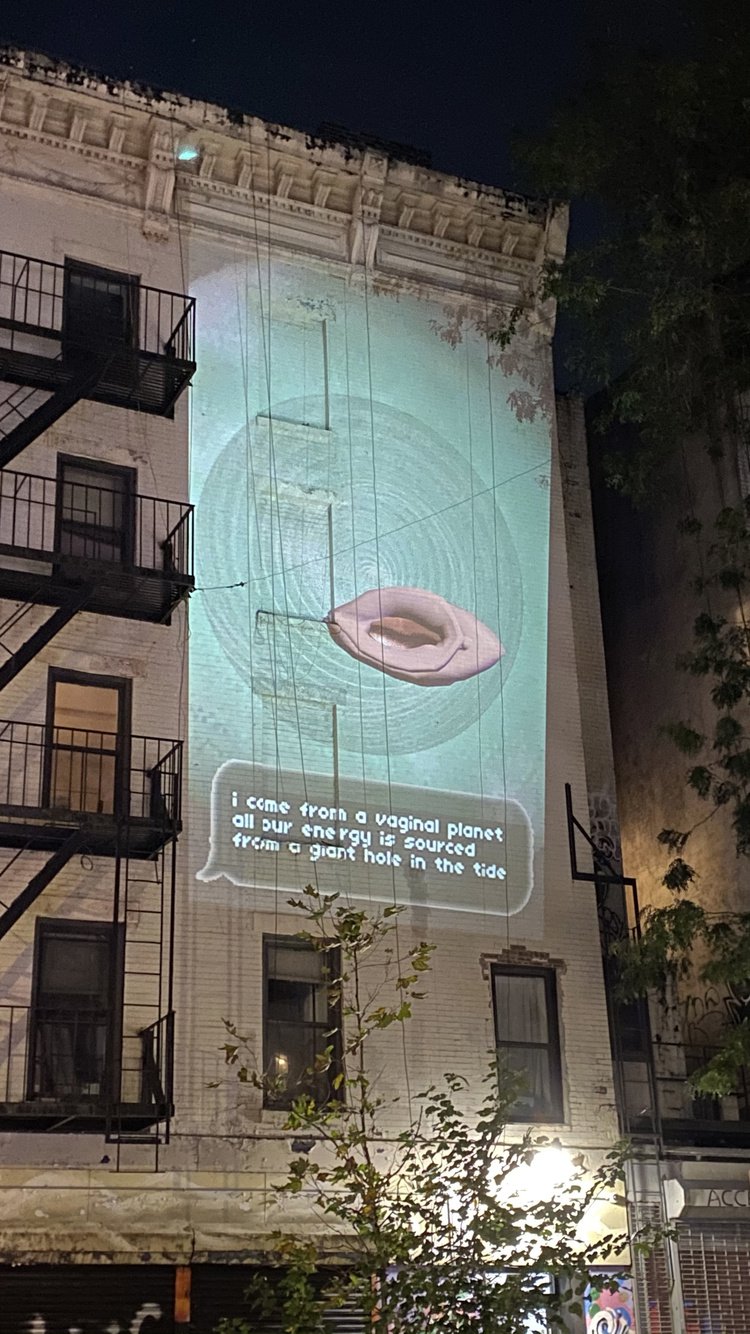
Alternative Energy (2020), video. Projected with Straight Through the Wall in East Village and Williamsburg, NYC.
Alternative Energy features a giant and all-knowing oracle, it is a site-specific attempt to smear vaginal power across the phallic landscape. Within a dominator value system, the imposition of physical and spiritual disconnect from our bodies and planet keeps us separate from our most basic needs and propels us into ecological crises. (589) Imagining new worlds will require radical outpourings of feminine energy as a means of unraveling the ten-thousand year legacy of patriarchal conditioning.
dear oracle: what is your nature?
i come from a vaginal planet. all of our energy is sourced from a giant hold in the tides.
dear oracle: how long will i exist inside of this vessel?
take a trip inside your belly to feel how death and birth are accessible on all sides
2020, Alexandra Neuman, video, 3 min., 5 sec.; excerpt from Alexandra Neuman, “Alternative Energy,” https://alexandraneuman.com/alternative-energy; submitted by Alexandra Neuman
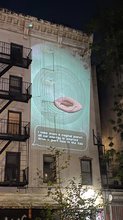
Alternative Energy (2020), video. Projected with Straight Through the Wall in East Village and Williamsburg, NYC.
(804)
2020
Origins
Justyna Górowska
Ta wystawa Justyny Górowskiej wystartowała 30 kwietnia, ale po zabójstwie George’a Floyda, podczas antyrasistowskich protestów, ma mocniejszy wydźwięk. „Origins” jest o skórze i jej politycznym wymiarze, szczególnie w kontekście rozwoju technologii, sztucznej inteligencji i inwigilacji w sieci. Górowska zabiera widzów do wirtualnego krajobrazu, po którym chodzi się jak w prostej grze komputerowej. Piasek po horyzont, niebo, chmury. Pusto, apokaliptycznie. W chmurach zawieszone są abstrakcyjne obrazy, instalacje. Jedna z nich jest rekonstrukcją sceny teatralnej zaprojektowanej przez Henryka Wicińskiego, artysty z awangardowej Grupy Krakowskiej z lat 20. XX wieku. Obrazy są w geometryczne wzory, mają fakturę skóry i są w różnych jej odcieniach—od bladej po ciemnobrązową. Powstały na postawie skanów skóry konkretnych osób.Tworzą wspólną skórę, kolektywne ciało, które może symbolicznie chronić przed identyfikacją, kontrolą. Jest też ekran odsyłający do strony, na której można sobie zaprojektować maskę AR.
This exhibition by Justyna Górowska started on April 30, but after the murder of George Floyd, it has a stronger tone during anti-racist protests. Origins is about skin (464) and its political dimension, especially in terms of technology development, artificial intelligence and web surveillance. Górowska takes viewers to a virtual landscape that is walked on like in a simple computer game. Sand to the horizon, sky, clouds. Empty, apocalyptic. Abstract paintings and installations are suspended in the clouds. One of them is a reconstruction of the theater stage designed by Henryk Wiciński, an artist from the avant-garde Krakow Group from the 1920s. The paintings are geometrically patterned, have the texture of the skin and come in a variety of shades—from pale to dark brown. Created on the basis of skin scans of specific people, they form a common skin, a collective body that can symbolically protect against identification and control.
2020, Justyna Górowska, https://justynagorowska.com/ORIGINS; excerpt from Jonna Ruszczyk, “Wirtualny Frankenstein,” Newsweek Polska, June 14, 2020, https://www.newsweek.pl/kultura/recenzja-justyna-gorowska-origins-lokal_30-wwwtheoriginssite/1cqrplq; submitted by Justyna Górowska
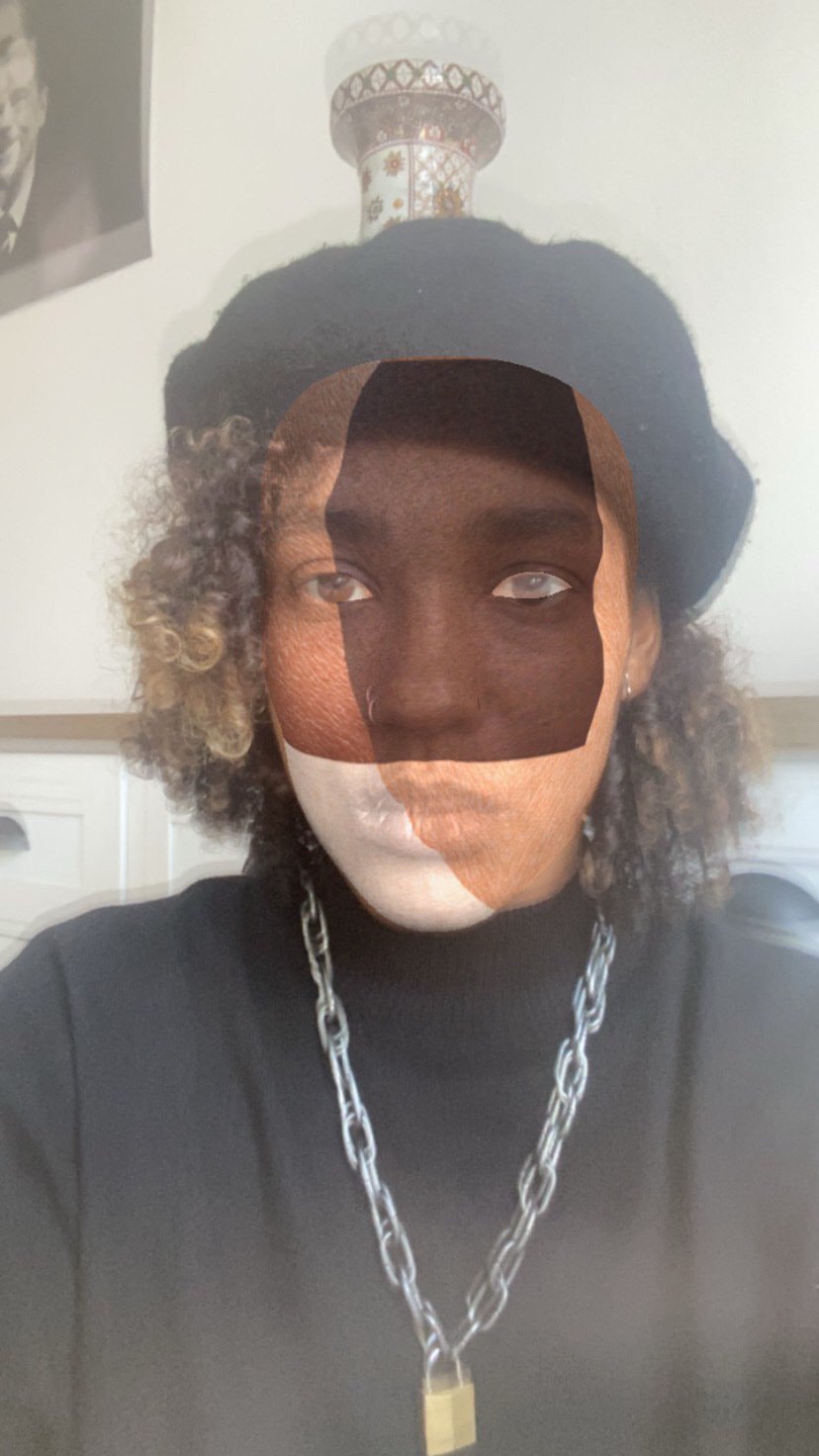
image from https://justynagorowska.com/ORIGINS
Ta wystawa Justyny Górowskiej wystartowała 30 kwietnia, ale po zabójstwie George’a Floyda, podczas antyrasistowskich protestów, ma mocniejszy wydźwięk. „Origins” jest o skórze i jej politycznym wymiarze, szczególnie w kontekście rozwoju technologii, sztucznej inteligencji i inwigilacji w sieci. Górowska zabiera widzów do wirtualnego krajobrazu, po którym chodzi się jak w prostej grze komputerowej. Piasek po horyzont, niebo, chmury. Pusto, apokaliptycznie. W chmurach zawieszone są abstrakcyjne obrazy, instalacje. Jedna z nich jest rekonstrukcją sceny teatralnej zaprojektowanej przez Henryka Wicińskiego, artysty z awangardowej Grupy Krakowskiej z lat 20. XX wieku. Obrazy są w geometryczne wzory, mają fakturę skóry i są w różnych jej odcieniach—od bladej po ciemnobrązową. Powstały na postawie skanów skóry konkretnych osób.Tworzą wspólną skórę, kolektywne ciało, które może symbolicznie chronić przed identyfikacją, kontrolą. Jest też ekran odsyłający do strony, na której można sobie zaprojektować maskę AR.
This exhibition by Justyna Górowska started on April 30, but after the murder of George Floyd, it has a stronger tone during anti-racist protests. Origins is about skin (464) and its political dimension, especially in terms of technology development, artificial intelligence and web surveillance. Górowska takes viewers to a virtual landscape that is walked on like in a simple computer game. Sand to the horizon, sky, clouds. Empty, apocalyptic. Abstract paintings and installations are suspended in the clouds. One of them is a reconstruction of the theater stage designed by Henryk Wiciński, an artist from the avant-garde Krakow Group from the 1920s. The paintings are geometrically patterned, have the texture of the skin and come in a variety of shades—from pale to dark brown. Created on the basis of skin scans of specific people, they form a common skin, a collective body that can symbolically protect against identification and control.
2020, Justyna Górowska, https://justynagorowska.com/ORIGINS; excerpt from Jonna Ruszczyk, “Wirtualny Frankenstein,” Newsweek Polska, June 14, 2020, https://www.newsweek.pl/kultura/recenzja-justyna-gorowska-origins-lokal_30-wwwtheoriginssite/1cqrplq; submitted by Justyna Górowska

image from https://justynagorowska.com/ORIGINS
(805)
2020
CQDE: A Feminist Manifestx of Code-ing
alejandro t. acierto, KT Duffy
CQDE: A feminist manifestx of code-ing is a forum to establish a culture of care through feminist principles where participants use code to produce their work. […] It became clear that intersectional feminist thought and creative coding could be explored in a shared space. This collaborative text outlines a new logic: one based on the shared territory between humans and machines, accessible coding practices, and within a culture of care. CQDE: A feminist manifestx of code-ing is a theoretical framework that is responsive to and in service of our communities.
CQDE: A feminist manifestx of code-ing is a template for a living curriculum that is adaptable and flexible. This template emerged from late-night conversations over rosé and Takis, long video chats, and screen share sessions. Our feminist manifestx (260) cannot be complete without the inclusion of another. This manifestx is a dialogic work meant to provoke impassioned conversations. Our writing is not intended to offer any answers. CQDE: A feminist manifestx of code–ing is an invitation to engage.
2019, alejandro t. acierto and KT Duffy (Chicago: [alejandro t. acierto and KT Duffy], 2020); excerpt p. 1
https://www.cqdelab.com/ https://cdn.glitch.com/4245d3ac-d023-4351-bf56-9874da7ab231%2FCQDE_A_Femenist_Manifestx_Of_Code-ing.pdf?v=1604265758306
CQDE: A feminist manifestx of code-ing is a forum to establish a culture of care through feminist principles where participants use code to produce their work. […] It became clear that intersectional feminist thought and creative coding could be explored in a shared space. This collaborative text outlines a new logic: one based on the shared territory between humans and machines, accessible coding practices, and within a culture of care. CQDE: A feminist manifestx of code-ing is a theoretical framework that is responsive to and in service of our communities.
CQDE: A feminist manifestx of code-ing is a template for a living curriculum that is adaptable and flexible. This template emerged from late-night conversations over rosé and Takis, long video chats, and screen share sessions. Our feminist manifestx (260) cannot be complete without the inclusion of another. This manifestx is a dialogic work meant to provoke impassioned conversations. Our writing is not intended to offer any answers. CQDE: A feminist manifestx of code–ing is an invitation to engage.
2019, alejandro t. acierto and KT Duffy (Chicago: [alejandro t. acierto and KT Duffy], 2020); excerpt p. 1
https://www.cqdelab.com/ https://cdn.glitch.com/4245d3ac-d023-4351-bf56-9874da7ab231%2FCQDE_A_Femenist_Manifestx_Of_Code-ing.pdf?v=1604265758306
(806)
2020
The Digital Lives of Black Women in Britain
Francesca Sobande
Shedding light on the structural omission and oppression of Black women in Britain, (558) Francesca Sobande explores the online challenges that Black women face. While navigating social media platforms, she argues it is difficult for a Black woman who is curious or even working in the media industry to find a community of other Black women because they are missing offline. The pivotal question that Sobande asks which helps unpack the implications of the digital experience of the Black women is: why are the Black women identified as “trendsetters” while being both erased and “hyper-visible as creators?” (p. 1) This question is the focus of the book as Sobande delves into the issues, experiences and perspectives that are seldom addressed regarding the digital lives of Black women in Britain.
2020, Francesca Sobande (London:Palgrave Macmillan, 2020); excerpt from Palgrave Macmillian; referred by Legacy Russell
Shedding light on the structural omission and oppression of Black women in Britain, (558) Francesca Sobande explores the online challenges that Black women face. While navigating social media platforms, she argues it is difficult for a Black woman who is curious or even working in the media industry to find a community of other Black women because they are missing offline. The pivotal question that Sobande asks which helps unpack the implications of the digital experience of the Black women is: why are the Black women identified as “trendsetters” while being both erased and “hyper-visible as creators?” (p. 1) This question is the focus of the book as Sobande delves into the issues, experiences and perspectives that are seldom addressed regarding the digital lives of Black women in Britain.
2020, Francesca Sobande (London:Palgrave Macmillan, 2020); excerpt from Palgrave Macmillian; referred by Legacy Russell
(807)
2020
E-Viction
Veil Machine
Sex workers made the internet what it is today. But as the internet grew, and tech companies started to monopolize the modern world, they’ve been pushed to the margins and forced off platforms by private interests and harmful legislation. (652) In response, a sex worker-led art collective is putting on a 12-hour virtual peepshow that will educate and titillate—and self-destruct at the stroke of midnight, to protest the proposed Eliminating Abusive and Rampant Neglect of Interactive Technologies Act.
Free speech advocates say that the act, known as EARN-IT, could be devastating to speech, sexuality, and marginalized communities like sex workers online. Titled E-Viction, the event [will] begin on Friday, August 21 at noon and go until midnight, at which point, it'll disappear from the web. During the event, sex workers will come together to make art while nude, have sex on live cams, talk in early internet-style text chat rooms, and sell protest art. “We envisioned E-Viction as a protest platform,” the producers of E-Viction, Niko Flux, Sybil Fury, and Empress Wu told me in an email. “Sex workers were pioneers of the digital realm, but are now being kicked off the same online spaces we built and inspired.”
2020, Veil Machine (Niko Flux, Sybil Fury, and Empress Wu), https://www.veilmachine.com; excerpt from Samantha Cole, “Sex Workers to Host Self-Destructing Digital Variety Show Against EARN-IT,” Vice, July 29, 2020, https://www.vice.com/en/article/jgxbag/sex-workers-earn-it-virtual-protest-e-viction; referred by Melanie Hoff
Sex workers made the internet what it is today. But as the internet grew, and tech companies started to monopolize the modern world, they’ve been pushed to the margins and forced off platforms by private interests and harmful legislation. (652) In response, a sex worker-led art collective is putting on a 12-hour virtual peepshow that will educate and titillate—and self-destruct at the stroke of midnight, to protest the proposed Eliminating Abusive and Rampant Neglect of Interactive Technologies Act.
Free speech advocates say that the act, known as EARN-IT, could be devastating to speech, sexuality, and marginalized communities like sex workers online. Titled E-Viction, the event [will] begin on Friday, August 21 at noon and go until midnight, at which point, it'll disappear from the web. During the event, sex workers will come together to make art while nude, have sex on live cams, talk in early internet-style text chat rooms, and sell protest art. “We envisioned E-Viction as a protest platform,” the producers of E-Viction, Niko Flux, Sybil Fury, and Empress Wu told me in an email. “Sex workers were pioneers of the digital realm, but are now being kicked off the same online spaces we built and inspired.”
2020, Veil Machine (Niko Flux, Sybil Fury, and Empress Wu), https://www.veilmachine.com; excerpt from Samantha Cole, “Sex Workers to Host Self-Destructing Digital Variety Show Against EARN-IT,” Vice, July 29, 2020, https://www.vice.com/en/article/jgxbag/sex-workers-earn-it-virtual-protest-e-viction; referred by Melanie Hoff
(808)
2020
TRANS FUTURES: Plant Transgenesis and DNA Design
Rian Ciela Hammond
This workshop is an introduction to Synthetic Biology and plant transgenesis from a queer perspective. We will go over the basic concepts of cell biology and learn techniques for in-silico (on a computer) DNA design. (427) We will also do an in-vivo (in a living plant) genetic modification procedure called Agroinfiltration. Together we will look at the violent colonial patriarchal structures that have produced these technologies and ask if and how it’s possible to, “repurpose technologies for progressive gender political ends …” as challenged by the 2016 Xenofeminist Manifesto.
2020, Rian Ciela Hammond, http://www.rianhammond.com/tf.html; referred by Rian Hammond
This workshop is an introduction to Synthetic Biology and plant transgenesis from a queer perspective. We will go over the basic concepts of cell biology and learn techniques for in-silico (on a computer) DNA design. (427) We will also do an in-vivo (in a living plant) genetic modification procedure called Agroinfiltration. Together we will look at the violent colonial patriarchal structures that have produced these technologies and ask if and how it’s possible to, “repurpose technologies for progressive gender political ends …” as challenged by the 2016 Xenofeminist Manifesto.
2020, Rian Ciela Hammond, http://www.rianhammond.com/tf.html; referred by Rian Hammond
(809)
2020
A [White] Cyborg’s Manifesto: The Overwhelmingly Western Ideology Driving Technofeminist Theory
Julia R. DeCook
“A Cyborg Manifesto” (1) is a required reading in many graduate programs to explore technofeminism, transhumanism, and studies of science and technology to explore notions of gender, race, and other minoritized identities. However, in this essay, I note the ways that Haraway’s piece still exacerbates categories of difference, and my own difficulties and critiques of the cyborg identity. I encourage readers to not only consider its importance, but also the limits of the cyborg identity, and how the concept of cyborg itself is fraught with a Western, patriarchal violence that cannot be ignored in the greater context of technology and technological innovation. Although useful in imagining a departure from traditional categories of difference, I inquire as to whether it upholds the very things it purported to dismantle, and explore other scholars’ works in challenging the concept. Ultimately, “cyborgs” (526) are not outside of the politics within which they exist, and must be interpreted in relation to other identity categories without upholding whiteness and Western epistemologies as the center.
2020, Julia R. DeCook, Media, Culture & Society 43, no. 6 (2021): pp. 1158–1167; excerpt from abstract
“A Cyborg Manifesto” (1) is a required reading in many graduate programs to explore technofeminism, transhumanism, and studies of science and technology to explore notions of gender, race, and other minoritized identities. However, in this essay, I note the ways that Haraway’s piece still exacerbates categories of difference, and my own difficulties and critiques of the cyborg identity. I encourage readers to not only consider its importance, but also the limits of the cyborg identity, and how the concept of cyborg itself is fraught with a Western, patriarchal violence that cannot be ignored in the greater context of technology and technological innovation. Although useful in imagining a departure from traditional categories of difference, I inquire as to whether it upholds the very things it purported to dismantle, and explore other scholars’ works in challenging the concept. Ultimately, “cyborgs” (526) are not outside of the politics within which they exist, and must be interpreted in relation to other identity categories without upholding whiteness and Western epistemologies as the center.
2020, Julia R. DeCook, Media, Culture & Society 43, no. 6 (2021): pp. 1158–1167; excerpt from abstract
(810)
2020
AIBO
Ellen Pearlman
You enter a black box theater with no seats. There are four hanging screens overhead. You see people milling around, and you see a long table in the middle with myself and Hans Gunter Lock, my Technical Director, behind a bunch of computers. People are just milling around, there’s nowhere to sit down except on the floor. Next to me is the woman who plays the character Eva [Sniedze Strauta]. She is wearing a bodysuit of light, which is a smart textile costume that is connected wirelessly to a brain-computer interface she is wearing on her head.
When the audience is assembled, I begin speaking. I explain to the audience that I am putting a brainwave headset on Sniedze. If they’re very curious, they come over and look from behind so they can see the computer I’m working on. When I put the brainwave headset on Sniedze the audience is watching. I explain to them that they may be touched, and they may be looked at by Sniedze during the performance. This is explained to them very clearly because that’s part of the process I have, to bring the audience in and have their participation and tacit permission.
I tell them that they’re going to see a performance between Eva and a Google Cloud-based AI called AIBO (Artificial Intelligent Brainwave Opera). As Eva speaks to AIBO her words will appear on a screen. At the same time, they will hear AIBO’s response live-time from the Google Cloud and its words will also appear on the same screen. Simultaneously, Eva’s brainwaves launch videos which play on the four screens overhead depending on her emotional state, and audio-triggered by her emotions. Her emotions also display on her body as different colors. So, you are seeing and hearing Eva’s emotions very vividly.
2020, Ellen Pearlman, https://www.youtube.com/watch?v=18tqDS0VelM&feature=youtu.be; excerpt from Ellen Pearlman in interview with Allison Berkoy, The Theater Times, “Interview with Ellen Pearlman about AIBO, an ‘Emotionally Intelligent’ Artificial Intelligent Brainwave Opera. Part 1.” 2021, https://thetheatretimes.com/interview-with-ellen-pearlman-about-aibo-an-emotionally-intelligent-artificial-intelligent-brainwave-opera-part-1/; submitted be Ellen Pearlman
You enter a black box theater with no seats. There are four hanging screens overhead. You see people milling around, and you see a long table in the middle with myself and Hans Gunter Lock, my Technical Director, behind a bunch of computers. People are just milling around, there’s nowhere to sit down except on the floor. Next to me is the woman who plays the character Eva [Sniedze Strauta]. She is wearing a bodysuit of light, which is a smart textile costume that is connected wirelessly to a brain-computer interface she is wearing on her head.
When the audience is assembled, I begin speaking. I explain to the audience that I am putting a brainwave headset on Sniedze. If they’re very curious, they come over and look from behind so they can see the computer I’m working on. When I put the brainwave headset on Sniedze the audience is watching. I explain to them that they may be touched, and they may be looked at by Sniedze during the performance. This is explained to them very clearly because that’s part of the process I have, to bring the audience in and have their participation and tacit permission.
I tell them that they’re going to see a performance between Eva and a Google Cloud-based AI called AIBO (Artificial Intelligent Brainwave Opera). As Eva speaks to AIBO her words will appear on a screen. At the same time, they will hear AIBO’s response live-time from the Google Cloud and its words will also appear on the same screen. Simultaneously, Eva’s brainwaves launch videos which play on the four screens overhead depending on her emotional state, and audio-triggered by her emotions. Her emotions also display on her body as different colors. So, you are seeing and hearing Eva’s emotions very vividly.
2020, Ellen Pearlman, https://www.youtube.com/watch?v=18tqDS0VelM&feature=youtu.be; excerpt from Ellen Pearlman in interview with Allison Berkoy, The Theater Times, “Interview with Ellen Pearlman about AIBO, an ‘Emotionally Intelligent’ Artificial Intelligent Brainwave Opera. Part 1.” 2021, https://thetheatretimes.com/interview-with-ellen-pearlman-about-aibo-an-emotionally-intelligent-artificial-intelligent-brainwave-opera-part-1/; submitted be Ellen Pearlman
(811)
2020
Meeting place: bringing Native feminisms to bear on borders of cyberspace
Ashley Cordes
Cyberspace, constructed as a vast interconnected assemblage of digital energy, has been anticipated and imagined by techno-optimists for its potential to act as a new gathering place. However, cyberspace has been discoursed and materialized in a manner that frames it as commodified land, reproducing colonialsim as well as the exclusionary gendered and raced notions that undergird it. While feminist media studies plays an important role in critiquing various -isms in technological environments, it still could benefit from decolonial Native feminisms approaches in light of several problems in the field. For one, there is a rampant misunderstanding when conceptualizing Indigenous peoples as a race versus citizens of nations in discussions of identity politics and technology. Another separate, but important, issue regards a noticeable lack of Native feminist perspectives and citational erasures in feminist media studies. This prevents Indigenous cyber or networked feminist concerns from rising and represses different strains of “truth in the emotional content of this felt knowledge: colonialism as it is felt by those who experience it” (Dian Million 2008, 272).
2020, Ashley Cordes, Feminist Media Studies 20, p.285, https://doi.org/10.1080/14680777.2020.1720347; submitted by Ashley Cordes
https://www.tandfonline.com/doi/abs/10.1080/14680777.2020.1720347?journalCode=rfms20
Cyberspace, constructed as a vast interconnected assemblage of digital energy, has been anticipated and imagined by techno-optimists for its potential to act as a new gathering place. However, cyberspace has been discoursed and materialized in a manner that frames it as commodified land, reproducing colonialsim as well as the exclusionary gendered and raced notions that undergird it. While feminist media studies plays an important role in critiquing various -isms in technological environments, it still could benefit from decolonial Native feminisms approaches in light of several problems in the field. For one, there is a rampant misunderstanding when conceptualizing Indigenous peoples as a race versus citizens of nations in discussions of identity politics and technology. Another separate, but important, issue regards a noticeable lack of Native feminist perspectives and citational erasures in feminist media studies. This prevents Indigenous cyber or networked feminist concerns from rising and represses different strains of “truth in the emotional content of this felt knowledge: colonialism as it is felt by those who experience it” (Dian Million 2008, 272).
2020, Ashley Cordes, Feminist Media Studies 20, p.285, https://doi.org/10.1080/14680777.2020.1720347; submitted by Ashley Cordes
https://www.tandfonline.com/doi/abs/10.1080/14680777.2020.1720347?journalCode=rfms20
(812)
2020
CYBORG CUNT GLITCH: A Heteroglossia of Three Oppositional Feminist Techno-Resources
Megan Dieudonné
In this text, three oppositional feminist techno-resources spawn to life: Cyborg from Donna Haraway’s A Cyborg Manifesto (1985), (x) “Cunt” from The Cyberfeminist Manifesto for the 21st Century (1991) (x) by the VNS Matrix, and Glitch from Legacy Russell’s Glitch Feminism: A Manifesto (2020). (x) The existence of each resource, the world(s) it inhabits, and the trouble it makes are expressed and promoted through language. The Cyborg makes trouble in the 1980s, by searching for dangerous potentials found in human-machine-couplings. The Cunt makes trouble in the early 1990s, through its provocative relationship with male-dominant cyberculture. The Glitch makes trouble in the 2020s, by celebrating the error and exploring unlimited identities online. The resources target the binary system that reads the material body as either male or female, thus leading it to “perform” one or the other. This assumption is what each resource aims to trouble, by injecting itself into the system and by blurring the boundaries between the real and the digital, the human and the machine. The resources provide an opportunity to reimagine what a body means and how it can perform, online and AFK2 (“Away From Keyboard”).
I will begin the text with a personal narrative; A Story of my own experience of “becoming” online. The BODY section will explain how gender is no longer a natural inevitability but a contingent production. I will then give an overview of two feminist discourses, posthumanism and cyberfeminism, and how each occupies itself with bodies and technologies. The MANIFESTO section introduces the three feminist publications, the manifesto as a genre, and how it is a tool for feminist activists. I will then discuss each resource and how it refuses the binary, by coupling with the machine.
2020, Megan Dieudonné, Master Thesis: HFBK University of Fine Arts Hamburg, Winter Semester 2020/21, Supervised by Christoph Knoth, Nora Sternfeld, https://cyborgcuntglitch.megandieudonne.com/; submitted by Megan Dieudonné
In this text, three oppositional feminist techno-resources spawn to life: Cyborg from Donna Haraway’s A Cyborg Manifesto (1985), (x) “Cunt” from The Cyberfeminist Manifesto for the 21st Century (1991) (x) by the VNS Matrix, and Glitch from Legacy Russell’s Glitch Feminism: A Manifesto (2020). (x) The existence of each resource, the world(s) it inhabits, and the trouble it makes are expressed and promoted through language. The Cyborg makes trouble in the 1980s, by searching for dangerous potentials found in human-machine-couplings. The Cunt makes trouble in the early 1990s, through its provocative relationship with male-dominant cyberculture. The Glitch makes trouble in the 2020s, by celebrating the error and exploring unlimited identities online. The resources target the binary system that reads the material body as either male or female, thus leading it to “perform” one or the other. This assumption is what each resource aims to trouble, by injecting itself into the system and by blurring the boundaries between the real and the digital, the human and the machine. The resources provide an opportunity to reimagine what a body means and how it can perform, online and AFK2 (“Away From Keyboard”).
I will begin the text with a personal narrative; A Story of my own experience of “becoming” online. The BODY section will explain how gender is no longer a natural inevitability but a contingent production. I will then give an overview of two feminist discourses, posthumanism and cyberfeminism, and how each occupies itself with bodies and technologies. The MANIFESTO section introduces the three feminist publications, the manifesto as a genre, and how it is a tool for feminist activists. I will then discuss each resource and how it refuses the binary, by coupling with the machine.
2020, Megan Dieudonné, Master Thesis: HFBK University of Fine Arts Hamburg, Winter Semester 2020/21, Supervised by Christoph Knoth, Nora Sternfeld, https://cyborgcuntglitch.megandieudonne.com/; submitted by Megan Dieudonné
(813)
2020
One Bubble Can Burst Twice: Deliquesced automation, figures of slime and cyberfeminism
Paul Boyé, Grace Connors
The figure of slime: a communal broth of oozing creatures, sludgy cyborgs and other amorphous flotsam. At one point, something was larval, self-replicating, inchoate. Eventually, a space of concepts, expressions, bodies and tools were spat out. A goopy bootstrap, bodies pulling and kneading at the protean liquids pooling around their limbs. [...] Certainly, the figure of slime—a pure emergent matter forming and deforming identities—persisted, but it was now cloistered by concrete ceilings, crystalline buildings and hard immovable bodies. The homogeneous culture of slime gave way to new solidity, and in doing so, was sectioned away to prevent any damage or danger to these new concrete bodies, and their rules, logic and reason, which had to be taken as immutable fact. [...] Two worlds that are ordered by one. An underground of slimy expressions, and an overground of solid heterogeneous logic. What do these worlds share, and how can this arrangement be reconfigured? [...]
The figure of slime invoked above emulates a vision of autonomy as liquid: inchoate, promiscuous, mutable and monstrously adaptable. And this figure is pitted against contemporary stratified subject-and-control relationships that are instead fixed, concrete, solid and discrete. However, despite the strong figurative difference between an autonomous slimy situation and a concrete system of control and controlled, the logic of automation is inherent in both.
2020, Paul Boyé, Grace Connors, Running Dog 1: Automate Me, https://rundog.art/issues/automateme/one-bubble-can-burst-five-points/; submitted by Paul Boyé
The figure of slime: a communal broth of oozing creatures, sludgy cyborgs and other amorphous flotsam. At one point, something was larval, self-replicating, inchoate. Eventually, a space of concepts, expressions, bodies and tools were spat out. A goopy bootstrap, bodies pulling and kneading at the protean liquids pooling around their limbs. [...] Certainly, the figure of slime—a pure emergent matter forming and deforming identities—persisted, but it was now cloistered by concrete ceilings, crystalline buildings and hard immovable bodies. The homogeneous culture of slime gave way to new solidity, and in doing so, was sectioned away to prevent any damage or danger to these new concrete bodies, and their rules, logic and reason, which had to be taken as immutable fact. [...] Two worlds that are ordered by one. An underground of slimy expressions, and an overground of solid heterogeneous logic. What do these worlds share, and how can this arrangement be reconfigured? [...]
The figure of slime invoked above emulates a vision of autonomy as liquid: inchoate, promiscuous, mutable and monstrously adaptable. And this figure is pitted against contemporary stratified subject-and-control relationships that are instead fixed, concrete, solid and discrete. However, despite the strong figurative difference between an autonomous slimy situation and a concrete system of control and controlled, the logic of automation is inherent in both.
2020, Paul Boyé, Grace Connors, Running Dog 1: Automate Me, https://rundog.art/issues/automateme/one-bubble-can-burst-five-points/; submitted by Paul Boyé
(814)
2020
Queer Maximalism Manifesto for the Hypertired
Pete Jiadong Qiang
Queer Maximalism Manifesto for the Hypertired is an architectural experimentation under ACG (Anime, Comic and Games) and fandom communities created by Pete Jiadong Qiang.
Queer Maximalism Manifesto for the Hypertired proposes that hyperisation is an inventive methodology of hybridising non-homogeneous physical and virtual spaces. It deploys gamification to translate multiple fandoms into a physical context and vice versa in order to accelerate the dissolution of physical and virtual spaces.
The Queer Maximalism Manifesto for the Hypertired engages with techno-Orientalism of new media representations to support the encounter of technological and cultural productions specifically within an Asian framework and expand the effect of schizophrenic significations of ACG.
The Queer Maximalism Manifesto for the Hypertired regards all ideas above as potential raw materials and aims for a Maximalism to the maximal text, digressing, referring and elaborating on Maximalist sound, which takes as much space as it can be rather than as little as one can get away. Within this #HyperBody, a new architectural space of queer futures emerges.
2020, Pete Jiadong Qiang, p.1–2, submitted by Pete Jiadong Qiang
https://www.are.na/block/19578862
Queer Maximalism Manifesto for the Hypertired is an architectural experimentation under ACG (Anime, Comic and Games) and fandom communities created by Pete Jiadong Qiang.
Queer Maximalism Manifesto for the Hypertired proposes that hyperisation is an inventive methodology of hybridising non-homogeneous physical and virtual spaces. It deploys gamification to translate multiple fandoms into a physical context and vice versa in order to accelerate the dissolution of physical and virtual spaces.
The Queer Maximalism Manifesto for the Hypertired engages with techno-Orientalism of new media representations to support the encounter of technological and cultural productions specifically within an Asian framework and expand the effect of schizophrenic significations of ACG.
The Queer Maximalism Manifesto for the Hypertired regards all ideas above as potential raw materials and aims for a Maximalism to the maximal text, digressing, referring and elaborating on Maximalist sound, which takes as much space as it can be rather than as little as one can get away. Within this #HyperBody, a new architectural space of queer futures emerges.
2020, Pete Jiadong Qiang, p.1–2, submitted by Pete Jiadong Qiang
https://www.are.na/block/19578862
(815)
2020
Art, Race, and the Internet: Mendi + Keith Obadike’s Black.Net.Art Actions
Megan Driscoll
Looking at the landscape of the internet today, it’s hard to imagine conversations about race not being a central part of net culture. Consider “Black Twitter,” a concept that goes beyond user demographics to describe the significant role the internet plays in promoting dialogues about race in all parts of our lives. Or spend some time exploring the many social media accounts dedicated to the cultural heritage of specific racial and ethnic groups, from influential Asian Pacific Islander women to artists of Africa and the African diaspora. You’ll also find these conversations happening in art-specific venues like Rhizome, which in 2017 hosted First Look: New Black Portraitures, (x) a primarily online exhibition that links the history of portraiture to questions surrounding blackness, representation, and image making in our networked present.
However, net culture looked very different back in the 1990s when internet use first started to become popular. It’s not that no one was talking about race online—there were actually quite a few email lists and other proto-social networks focused on race and ethnicity—but these discussions tended to be ignored in the mainstream, or simply treated as peripheral. Cyber enthusiasts had long promoted the misguided perception that virtual communication could allow users to interact without the prejudices associated with physical difference such as race, gender, or disability. When advertisers seized on this premise as a strategy for making the strange new world of the internet seem more approachable, they popularized the idea that, to quote a 1997 internet ad for telecom MCI, on the internet “there is no race.” In fact, the notion that race was simply irrelevant to life online became so prevalent that sociologist Alondra Nelson once declared it the “founding fiction of the digital age.”
During this same period internet art, or net art, was becoming a more widely recognized category of artistic practice. Like in the rest of net culture, race was not a common topic in early net art—but that doesn’t mean there weren’t artists addressing it. Here, we’ll focus on Mendi + Keith Obadike’s Black.Net.Art Actions (2001–2003), a suite of retroactively grouped artworks that argue that racial discourses aren’t just relevant online, they are essential to how we interact with computer networks.
2020, Dr. Megan Driscoll, “Art, Race, and the Internet: Mendi + Keith Obadike’s Black.Net.Art Actions,” in Smarthistory, accessed December 27, 2022, https://smarthistory.org/art-race-internet-mendi-keith-obadike-black-net-art-actions/; referred by Mendi Obadike
Looking at the landscape of the internet today, it’s hard to imagine conversations about race not being a central part of net culture. Consider “Black Twitter,” a concept that goes beyond user demographics to describe the significant role the internet plays in promoting dialogues about race in all parts of our lives. Or spend some time exploring the many social media accounts dedicated to the cultural heritage of specific racial and ethnic groups, from influential Asian Pacific Islander women to artists of Africa and the African diaspora. You’ll also find these conversations happening in art-specific venues like Rhizome, which in 2017 hosted First Look: New Black Portraitures, (x) a primarily online exhibition that links the history of portraiture to questions surrounding blackness, representation, and image making in our networked present.
However, net culture looked very different back in the 1990s when internet use first started to become popular. It’s not that no one was talking about race online—there were actually quite a few email lists and other proto-social networks focused on race and ethnicity—but these discussions tended to be ignored in the mainstream, or simply treated as peripheral. Cyber enthusiasts had long promoted the misguided perception that virtual communication could allow users to interact without the prejudices associated with physical difference such as race, gender, or disability. When advertisers seized on this premise as a strategy for making the strange new world of the internet seem more approachable, they popularized the idea that, to quote a 1997 internet ad for telecom MCI, on the internet “there is no race.” In fact, the notion that race was simply irrelevant to life online became so prevalent that sociologist Alondra Nelson once declared it the “founding fiction of the digital age.”
During this same period internet art, or net art, was becoming a more widely recognized category of artistic practice. Like in the rest of net culture, race was not a common topic in early net art—but that doesn’t mean there weren’t artists addressing it. Here, we’ll focus on Mendi + Keith Obadike’s Black.Net.Art Actions (2001–2003), a suite of retroactively grouped artworks that argue that racial discourses aren’t just relevant online, they are essential to how we interact with computer networks.
2020, Dr. Megan Driscoll, “Art, Race, and the Internet: Mendi + Keith Obadike’s Black.Net.Art Actions,” in Smarthistory, accessed December 27, 2022, https://smarthistory.org/art-race-internet-mendi-keith-obadike-black-net-art-actions/; referred by Mendi Obadike
(816)
2020
SNAIL Magazine Issue 01: Revisiting Cyberfeminism
Ada Karayel
SNAIL is a biannual publication which explores and embraces gender concepts through different perspectives of art and technology. Every issue will have different genres and concepts which explore gender from different perspectives of writers, artists, activists, developers etc. In the first issue, called “Revisiting Cyberfeminism” I try to build a publication through my own definition of Cyberfeminism. Further on contributors from different backgrounds add to this definition. Such as Cornelia Sollfrank (an essay called "Revisiting Cyberfeminism” with visuals created by “net.art generator), Tabita Rezaire, Anna Uddenberg, CREAMCAKE, Jack Halberstam (an article called “Poisoned Apples”), FIKAFUTURA (an Italian transfeminist group which create different workshops related to the understanding of the body), Mare Tralla (an interview with an artist and activist, also a member of Old Boys Network).
2020, ed. Ada Karayel, contributors: Cornelia Sollfrank, Mare Tralla, FIKAFUTURA, Mindy Seu, Jack Halberstam, Victoria Sin, Anna Uddenberg; excerpt from email to Mindy Seu, subject: “Ada Karayel/ SNAIL Magazine”, Jan 14, 2020; submitted by Ada Karayel
https://www.are.na/block/19584926 https://vimeo.com/401335360

Snail Magazine, cover design by Ada Karayel
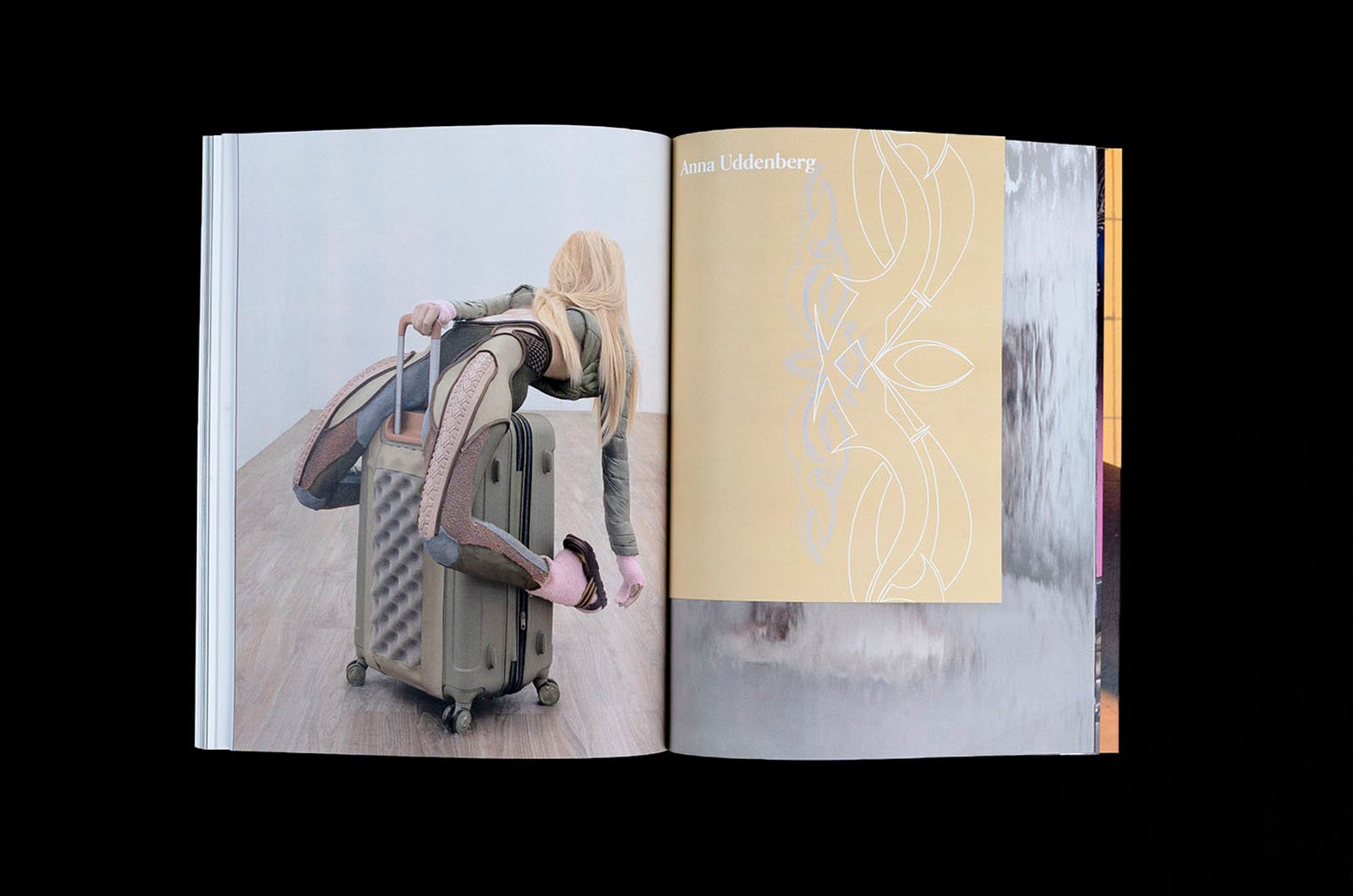
Snail Magazine, pp. 89–90, Anna Uddenberg, “Savage #9,” 2017, fiberglass, aqua resin, synthetic hair, acrylic nails, fabric, quilted faux leather, fake fur, flip flops, puffie, mountain bike tires, suitcase
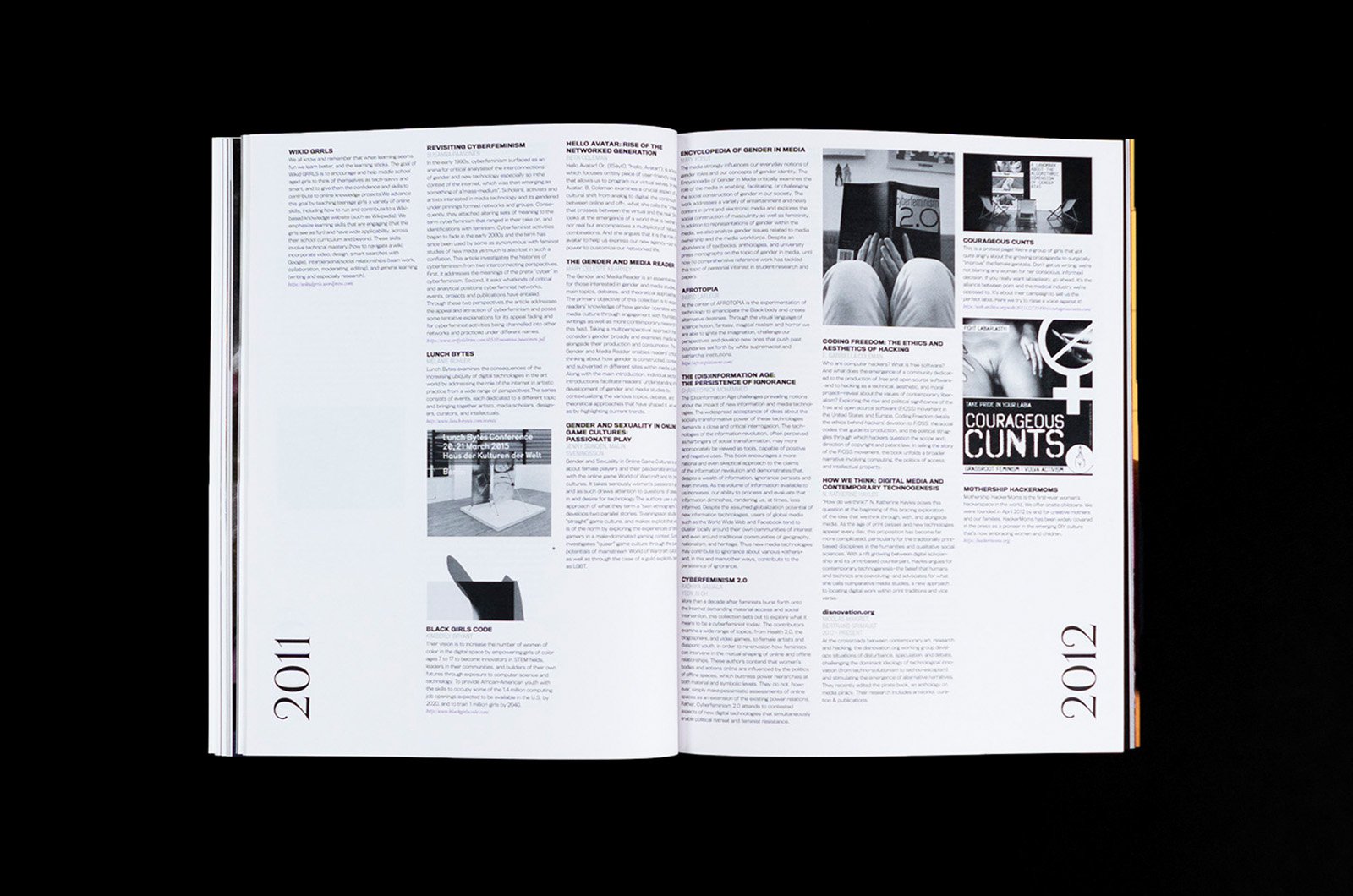
Snail Magazine, pp. 62–63, selections of Cyberfeminism Index curated by Ada Karayel
SNAIL is a biannual publication which explores and embraces gender concepts through different perspectives of art and technology. Every issue will have different genres and concepts which explore gender from different perspectives of writers, artists, activists, developers etc. In the first issue, called “Revisiting Cyberfeminism” I try to build a publication through my own definition of Cyberfeminism. Further on contributors from different backgrounds add to this definition. Such as Cornelia Sollfrank (an essay called "Revisiting Cyberfeminism” with visuals created by “net.art generator), Tabita Rezaire, Anna Uddenberg, CREAMCAKE, Jack Halberstam (an article called “Poisoned Apples”), FIKAFUTURA (an Italian transfeminist group which create different workshops related to the understanding of the body), Mare Tralla (an interview with an artist and activist, also a member of Old Boys Network).
2020, ed. Ada Karayel, contributors: Cornelia Sollfrank, Mare Tralla, FIKAFUTURA, Mindy Seu, Jack Halberstam, Victoria Sin, Anna Uddenberg; excerpt from email to Mindy Seu, subject: “Ada Karayel/ SNAIL Magazine”, Jan 14, 2020; submitted by Ada Karayel
https://www.are.na/block/19584926 https://vimeo.com/401335360

Snail Magazine, cover design by Ada Karayel
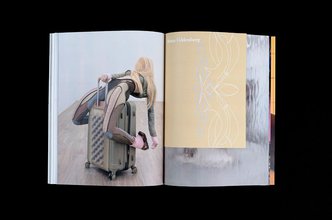
Snail Magazine, pp. 89–90, Anna Uddenberg, “Savage #9,” 2017, fiberglass, aqua resin, synthetic hair, acrylic nails, fabric, quilted faux leather, fake fur, flip flops, puffie, mountain bike tires, suitcase
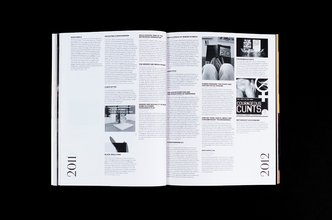
Snail Magazine, pp. 62–63, selections of Cyberfeminism Index curated by Ada Karayel
(817)
2020
mEat me
Theresa Schubert
mEat me asks for a re-evaluation of our dealings with meat, one’s own body and materiality in times where technology has entered every part of our society and finally also made our bodies reconstructable, as well as the ethical aspect of laboratory processes.
Many thinkers of posthumanism stress a non-human-centred perspective on the world, that we should assume a more modest role in our dealings with nature and stop hierarchizing species. Artist Theresa Schubert has drawn the radical consequence that if we see the human as an animal, then we should also be material and food. In her project, Schubert demonstrates that this provocation is not science fiction or a morbid dystopia through fearlessly exploiting her own body as a ground for experimentation. Making the human vulnerable can also be understood as a strategy for raising awareness of biopolitical issues and a more conscious dealing with nature and its living beings at large. [...]
As an artistic research project, mEat me applies innovative biotechnological advancement beyond a scientific purpose or monetary intent. It engages with the urgent topic of food supply in times of meat mass production and its relevance not only for our consciousness but for our future on this planet.
2020, Theresa Schubert, Kapelica Gallery, https://www.theresaschubert.com/works/meat-me/, excerpt from artist’s page; submitted by Marco Donnarumma
Ljubljana

mEat me, biopsy on artist’s leg, photo by Hana Josic, Kapelica Gallery Archives; image from https://www.theresaschubert.com/works/meat-me/
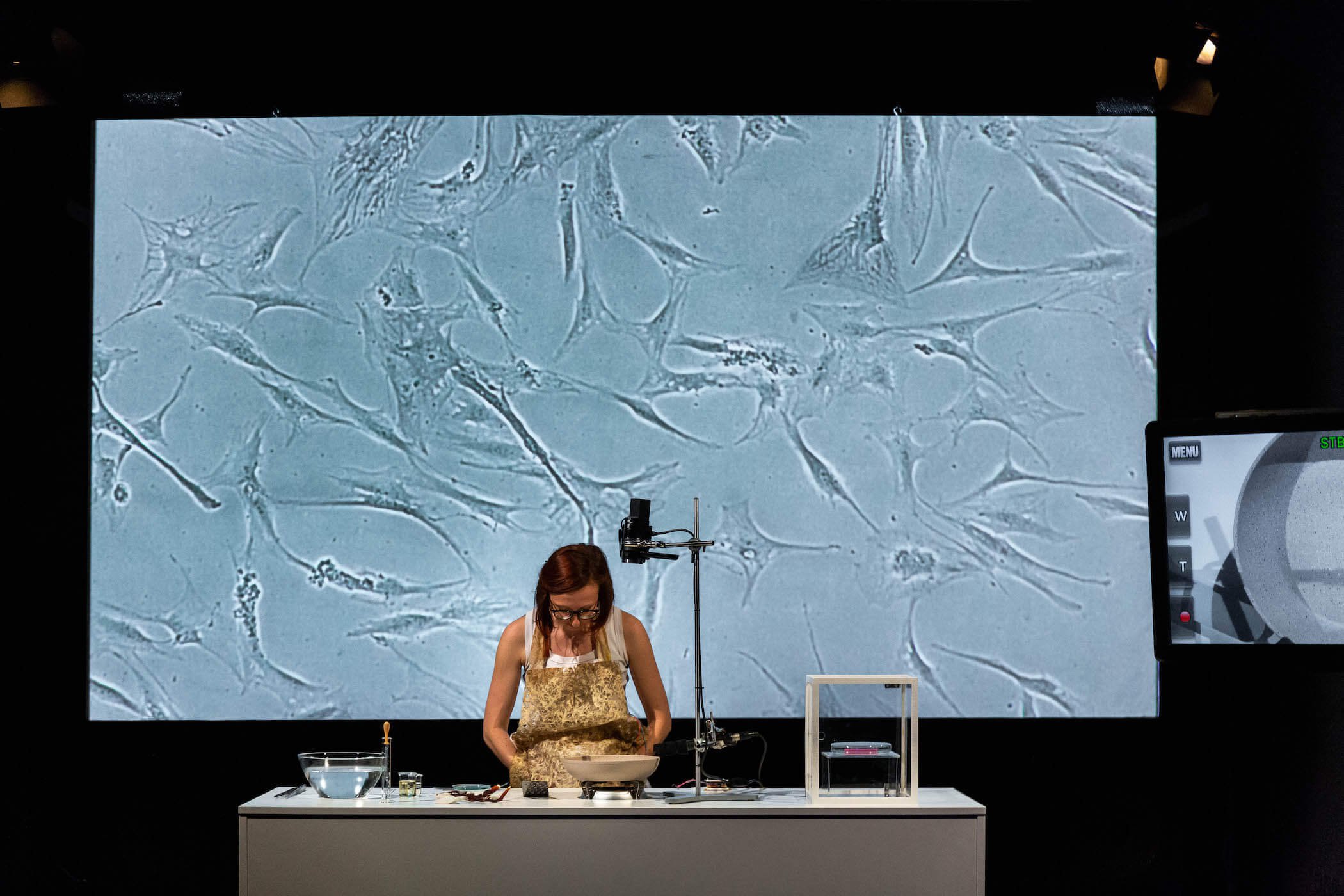
mEat me performance at Kapelica Gallery; photo by Hana Josic, Kapelica Gallery Archives; image from https://www.theresaschubert.com/works/meat-me/
mEat me asks for a re-evaluation of our dealings with meat, one’s own body and materiality in times where technology has entered every part of our society and finally also made our bodies reconstructable, as well as the ethical aspect of laboratory processes.
Many thinkers of posthumanism stress a non-human-centred perspective on the world, that we should assume a more modest role in our dealings with nature and stop hierarchizing species. Artist Theresa Schubert has drawn the radical consequence that if we see the human as an animal, then we should also be material and food. In her project, Schubert demonstrates that this provocation is not science fiction or a morbid dystopia through fearlessly exploiting her own body as a ground for experimentation. Making the human vulnerable can also be understood as a strategy for raising awareness of biopolitical issues and a more conscious dealing with nature and its living beings at large. [...]
As an artistic research project, mEat me applies innovative biotechnological advancement beyond a scientific purpose or monetary intent. It engages with the urgent topic of food supply in times of meat mass production and its relevance not only for our consciousness but for our future on this planet.
2020, Theresa Schubert, Kapelica Gallery, https://www.theresaschubert.com/works/meat-me/, excerpt from artist’s page; submitted by Marco Donnarumma
Ljubljana

mEat me, biopsy on artist’s leg, photo by Hana Josic, Kapelica Gallery Archives; image from https://www.theresaschubert.com/works/meat-me/

mEat me performance at Kapelica Gallery; photo by Hana Josic, Kapelica Gallery Archives; image from https://www.theresaschubert.com/works/meat-me/
(818)
2020
OS/error
Roby Redgrave McPherson, Aliisa Talja
OS/error is a collaborative production that attempts to soften the visual, auditory, and linguistic boundaries of separation between the human, the computer and the environment. It is composed as a six-mode speculative operating system that poetically performs: Searching, Functioning, Building, Aligning, Scripting and Scrolling. These processes mediate interconnectedness through supporting the perception of human beings and technological inventions as variations of multiform nature that are indivisible from the environment.
OS/error does not need to work in any standard or normal sense in order to “work.” As an erroneous operating system (and glitched construction) it is queer in the sense of its functioning to rupture norms and dismantle oppressive fixities. OS/error is an intentional and critical mode of operating, resisting a culture of binary code, measurement and calculation and maintaining the functions of indeterminacy, inefficiency and delay. In rendering and drawing attention to errors, glitches and failures, OS/error functions as a means to stay with what is unknown, feared and depreciated and in doing so present queerness as a generative, shared and intrinsic phenomena.
2020, Roby Redgrave McPherson and Aliisa Talja, run.oserror.robynn.xyz; submitted by Roby Redgrave McPherson
http://run.oserror.robynn.xyz/files/OS_ERROR_MANUAL.pdf
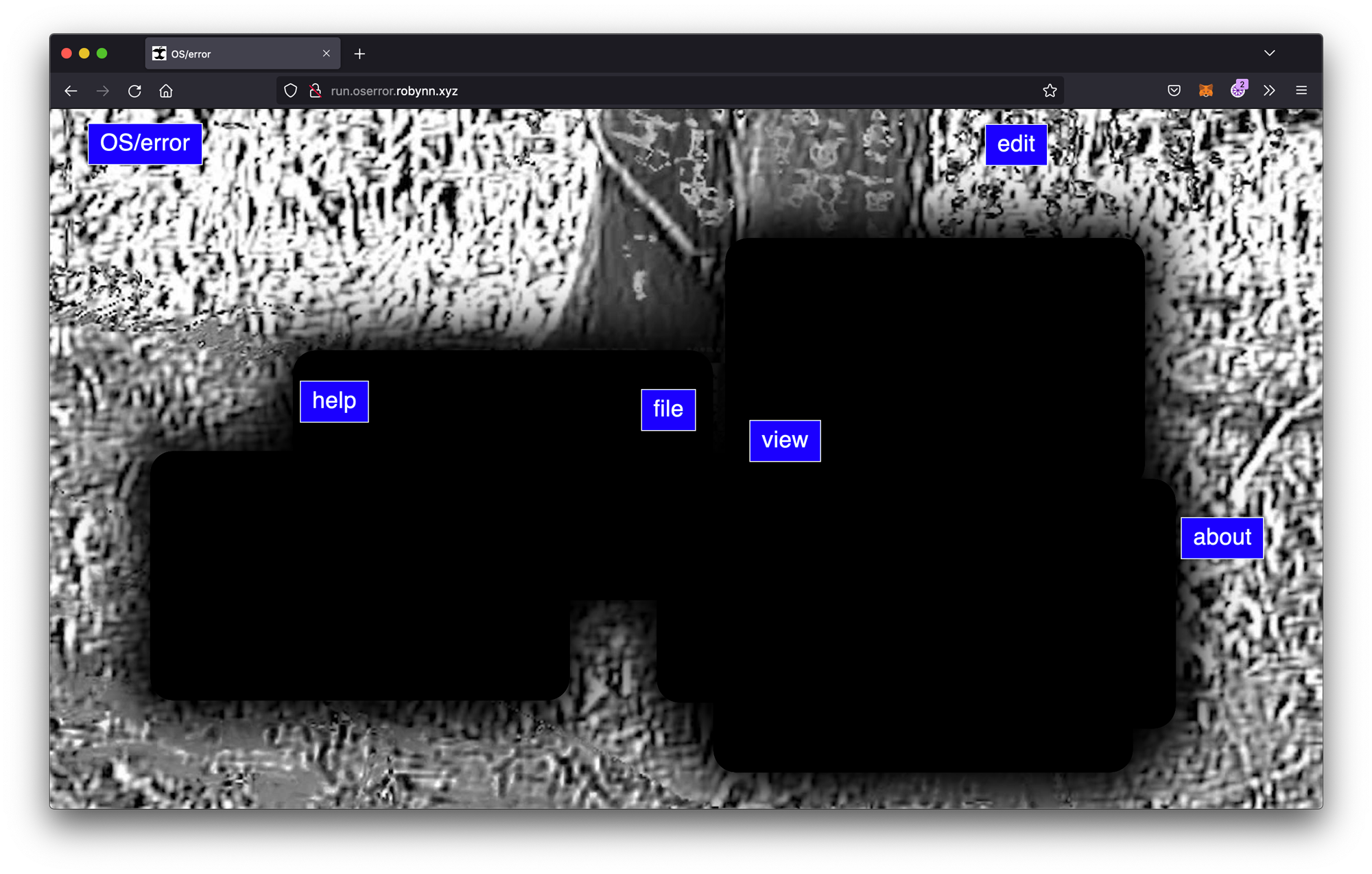
OS/error homepage, Screenshot, 2022, Firefox v108.0.1 on Mac OS 10.15.7; run.oserror.robynn.xyz
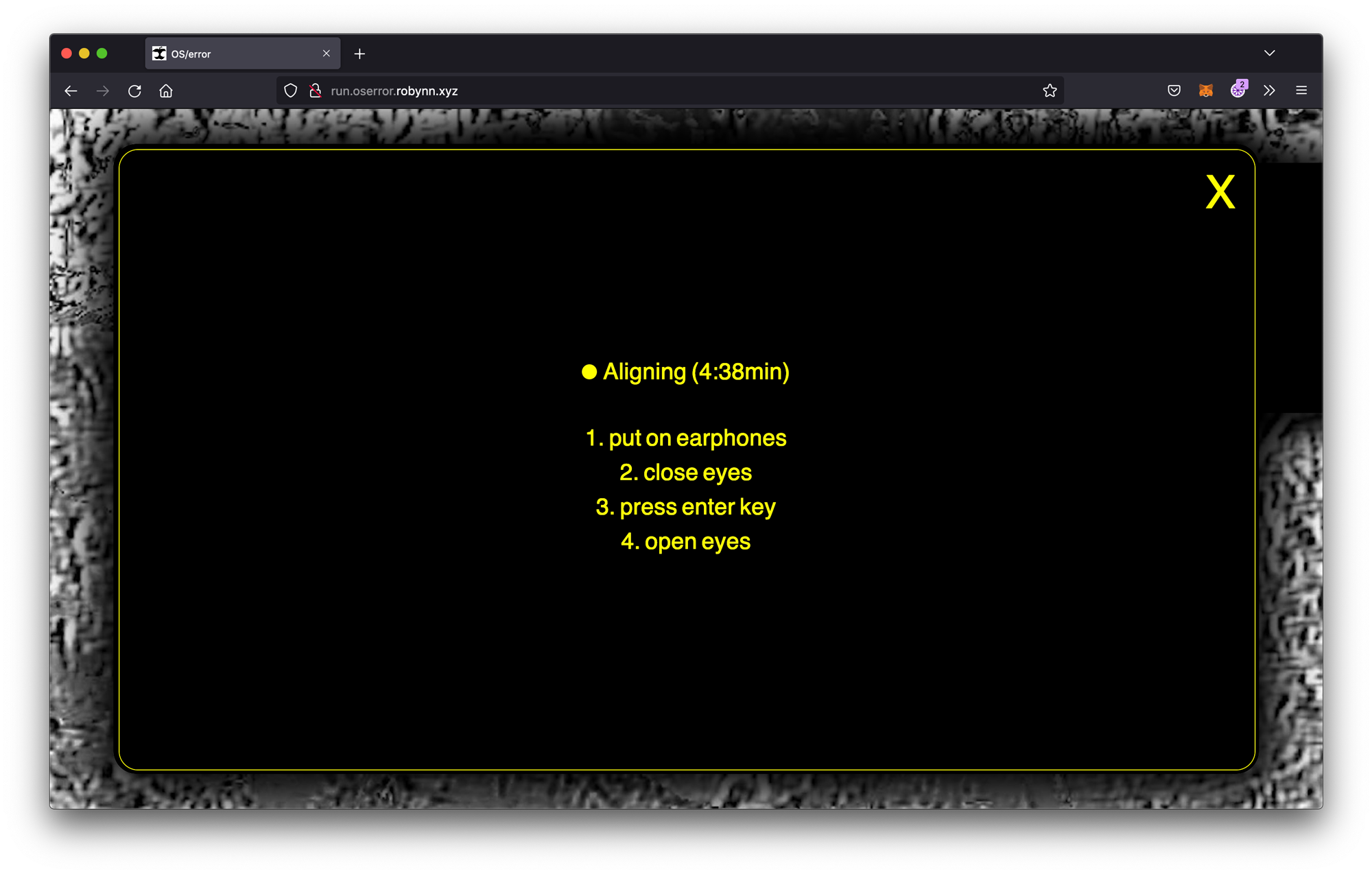
OS/error “Aligning” page, Screenshot, 2022, Firefox v108.0.1 on Mac OS 10.15.7; run.oserror.robynn.xyz
OS/error is a collaborative production that attempts to soften the visual, auditory, and linguistic boundaries of separation between the human, the computer and the environment. It is composed as a six-mode speculative operating system that poetically performs: Searching, Functioning, Building, Aligning, Scripting and Scrolling. These processes mediate interconnectedness through supporting the perception of human beings and technological inventions as variations of multiform nature that are indivisible from the environment.
OS/error does not need to work in any standard or normal sense in order to “work.” As an erroneous operating system (and glitched construction) it is queer in the sense of its functioning to rupture norms and dismantle oppressive fixities. OS/error is an intentional and critical mode of operating, resisting a culture of binary code, measurement and calculation and maintaining the functions of indeterminacy, inefficiency and delay. In rendering and drawing attention to errors, glitches and failures, OS/error functions as a means to stay with what is unknown, feared and depreciated and in doing so present queerness as a generative, shared and intrinsic phenomena.
2020, Roby Redgrave McPherson and Aliisa Talja, run.oserror.robynn.xyz; submitted by Roby Redgrave McPherson
http://run.oserror.robynn.xyz/files/OS_ERROR_MANUAL.pdf
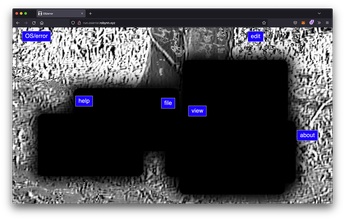
OS/error homepage, Screenshot, 2022, Firefox v108.0.1 on Mac OS 10.15.7; run.oserror.robynn.xyz
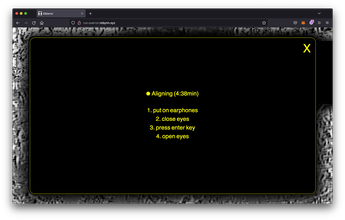
OS/error “Aligning” page, Screenshot, 2022, Firefox v108.0.1 on Mac OS 10.15.7; run.oserror.robynn.xyz
(819)
2020
Micro-Nude
Liliana Gonzalez
In opposition to Facebook Community Standards: Adult Nudity and Sexual Activity, whose rule has reinforced gender inequalities, sexism, and racism, and in opposition to the use of artificial intelligence as a surveillance tool on social media, I have created Micro-Nude (2020), which are pictures that contain nudity resized into a smaller size.
Micro-Nude’s first experience started in 2020, playing with the social media user’s expectation of the misrepresentation of the Latina body and the notion of voyeurism. Micro-Nude is aware of the capacity of the viewer’s desire to screenshot and zoom into the image. The voyeur who will try to explore this option with the Micro-Nude will only see a body reduced to pixel form due to the size of the picture.
Understanding the marginalization and sexualization made on BIPOC, LGBTQ++, and female bodies reflected in technologies, the second experience consisted of testing the algorithm’s limits to find a space to resist. Micro-Nude found a glitch in the AI of Instagram and used it to do art to resist the cyber-stress environment and reappropriate the narrative surrounding the female body. According to the transparency center of Facebook, their AI can delete more than 90% of the publications that go against community standards.
2020, Liliana Gonzalez, lecture, Positionality Symposium, Day 3: Intersectional Queer and Feminist Identities, LACAP; submitted by Liliana Gonzalez
https://www.surgalleryvirtual.ca/queer-femminist-identities https://www.youtube.com/watch?v=Z1nmnm3opRo&t=1254s
In opposition to Facebook Community Standards: Adult Nudity and Sexual Activity, whose rule has reinforced gender inequalities, sexism, and racism, and in opposition to the use of artificial intelligence as a surveillance tool on social media, I have created Micro-Nude (2020), which are pictures that contain nudity resized into a smaller size.
Micro-Nude’s first experience started in 2020, playing with the social media user’s expectation of the misrepresentation of the Latina body and the notion of voyeurism. Micro-Nude is aware of the capacity of the viewer’s desire to screenshot and zoom into the image. The voyeur who will try to explore this option with the Micro-Nude will only see a body reduced to pixel form due to the size of the picture.
Understanding the marginalization and sexualization made on BIPOC, LGBTQ++, and female bodies reflected in technologies, the second experience consisted of testing the algorithm’s limits to find a space to resist. Micro-Nude found a glitch in the AI of Instagram and used it to do art to resist the cyber-stress environment and reappropriate the narrative surrounding the female body. According to the transparency center of Facebook, their AI can delete more than 90% of the publications that go against community standards.
2020, Liliana Gonzalez, lecture, Positionality Symposium, Day 3: Intersectional Queer and Feminist Identities, LACAP; submitted by Liliana Gonzalez
https://www.surgalleryvirtual.ca/queer-femminist-identities https://www.youtube.com/watch?v=Z1nmnm3opRo&t=1254s
(820)
2020
@ilusão [@illusion]
Vitória Cribb
In the work @illusion the repetition of images guides the reflection on the states of ecstasy, anxiety, stress, tiredness and loneliness that continuously affect us when interacting with the other and with the algorithm, the one that determines our hierarchical position in the digital environment through the curves of engagement.
In the face of current events, the artist faces two extremes of repetition in our society. Drawing a parallel between the repetition of violence, in a society shaped by racism, and its investigation of the content loopings to which we are exposed daily in the midst of early virtual socialization and algorithmic racism.
2020, Vitória Cribb, https://newart.city/show/illusao-vitoria-cribb, excerpt from https://vimeo.com/766656862?embedded=true&source=video_title&owner=86092210; submitted by Vitória Cribb

@ilusão, image from https://newart.city/show/illusao-vitoria-cribb
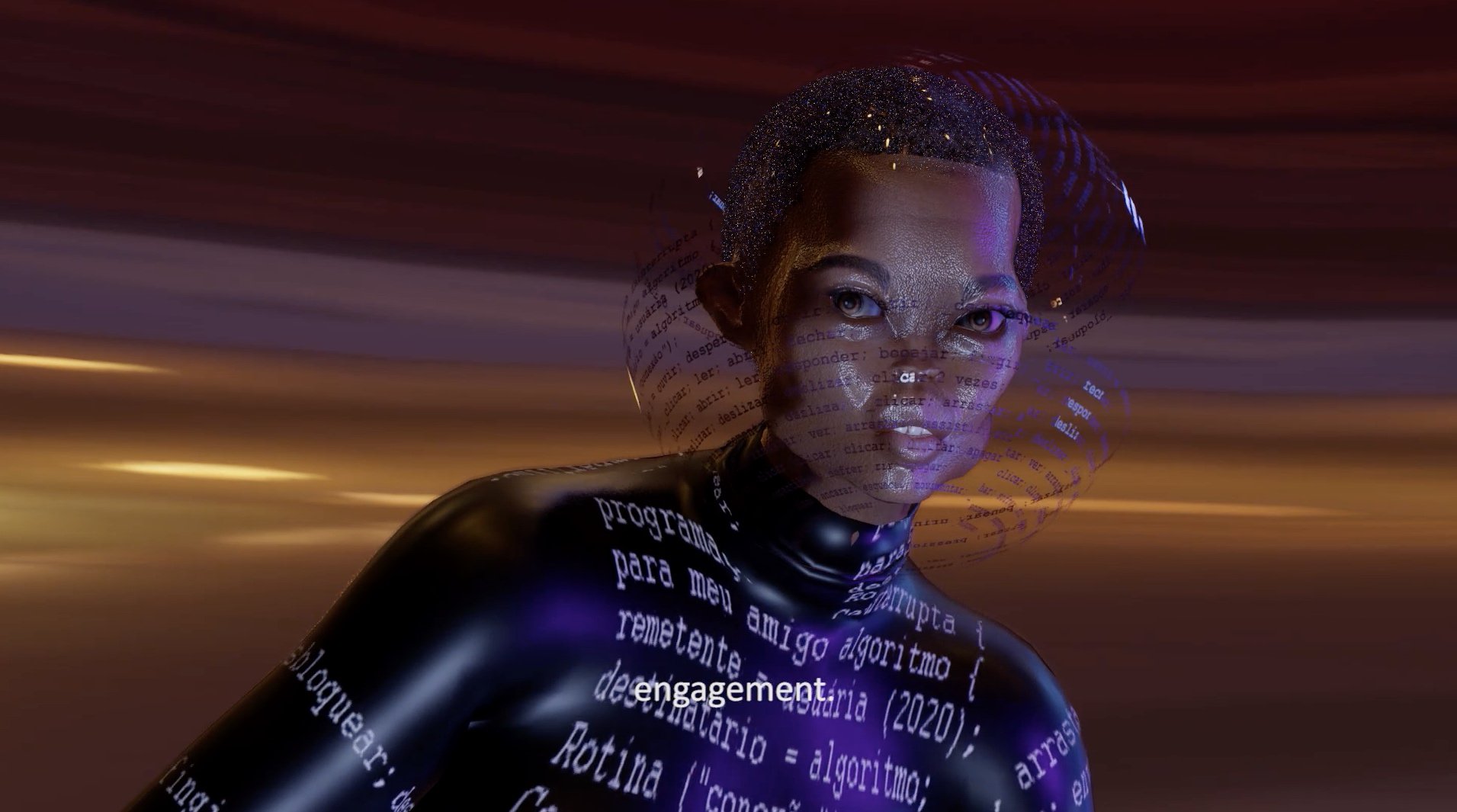
@ilusão, video still from trailer 00:23, https://vimeo.com/766656862?embedded=true&source=video_title&owner=86092210
In the work @illusion the repetition of images guides the reflection on the states of ecstasy, anxiety, stress, tiredness and loneliness that continuously affect us when interacting with the other and with the algorithm, the one that determines our hierarchical position in the digital environment through the curves of engagement.
In the face of current events, the artist faces two extremes of repetition in our society. Drawing a parallel between the repetition of violence, in a society shaped by racism, and its investigation of the content loopings to which we are exposed daily in the midst of early virtual socialization and algorithmic racism.
2020, Vitória Cribb, https://newart.city/show/illusao-vitoria-cribb, excerpt from https://vimeo.com/766656862?embedded=true&source=video_title&owner=86092210; submitted by Vitória Cribb

@ilusão, image from https://newart.city/show/illusao-vitoria-cribb
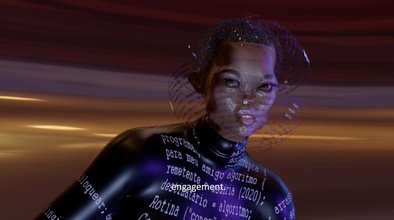
@ilusão, video still from trailer 00:23, https://vimeo.com/766656862?embedded=true&source=video_title&owner=86092210
(821)
2020
WeaverGirl 织女计划
_ao_ao_ing
Tailor-made for people who work in public figures, customer service sector, sales and so on, Weaver Girl embraces a brighter future with cutting-edge emotion-enhancement technology that provides emotional success and mental wellbeing for everybody. It creates emotional-enhancement tools that combines functionality and style with a perfect balance. Users will obtain total control over their emotional performance in workplace without having to compromise their mental health.
Outsource your emotional workload to us—the Weaver Girl products and supporting softwares—and set your heart free. Be elegant, genuine, friendly and professional to everybody in your workplace.
专为公众人物、客服、销售等行业人士量身打造,“织女” 拥抱更美好的未来,以尖端的情感增强技术为每个人提供情感成功和心理健康。它创造了情感增强工具,将功能和风格完美结合。用户将完全控制他们在工作场所的情绪表现,而不必损害他们的心理健康。
将您的情感工作外包给我们——“织女” 产品和支持软件——让您的心自由。对工作场所中的每个人都要优雅、真诚、友好和专业。
2018–present, aoaoing ensemble, https://www.weaver-girl.com/; submitted by Cuixi Lin

Weavergirl, Maid, model: WeaverGirl-M001; image from https://www.weaver-girl.com/

Weavergirl, Consul-General’s Wife, model: WeaverGirl-CGW001; image from https://www.weaver-girl.com/

Weavergirl, Live Stream Host, model: WeaverGirl-LSH001; image from https://www.weaver-girl.com/

Weavergirl, Flight Attendant, model: WeaverGirl-FA001; image from https://www.weaver-girl.com/
Tailor-made for people who work in public figures, customer service sector, sales and so on, Weaver Girl embraces a brighter future with cutting-edge emotion-enhancement technology that provides emotional success and mental wellbeing for everybody. It creates emotional-enhancement tools that combines functionality and style with a perfect balance. Users will obtain total control over their emotional performance in workplace without having to compromise their mental health.
Outsource your emotional workload to us—the Weaver Girl products and supporting softwares—and set your heart free. Be elegant, genuine, friendly and professional to everybody in your workplace.
专为公众人物、客服、销售等行业人士量身打造,“织女” 拥抱更美好的未来,以尖端的情感增强技术为每个人提供情感成功和心理健康。它创造了情感增强工具,将功能和风格完美结合。用户将完全控制他们在工作场所的情绪表现,而不必损害他们的心理健康。
将您的情感工作外包给我们——“织女” 产品和支持软件——让您的心自由。对工作场所中的每个人都要优雅、真诚、友好和专业。
2018–present, aoaoing ensemble, https://www.weaver-girl.com/; submitted by Cuixi Lin

Weavergirl, Maid, model: WeaverGirl-M001; image from https://www.weaver-girl.com/

Weavergirl, Consul-General’s Wife, model: WeaverGirl-CGW001; image from https://www.weaver-girl.com/

Weavergirl, Live Stream Host, model: WeaverGirl-LSH001; image from https://www.weaver-girl.com/

Weavergirl, Flight Attendant, model: WeaverGirl-FA001; image from https://www.weaver-girl.com/
(822)
2020
Language is Leaving Me
Summer Jade Leavitt
This is about the pain we carry in our mouths: language. How the ways we think and express ourselves can reflect the wounds created by a white supremacist heteropatriarchal state even when we do not intend for them to. Their harm penetrates us in ways we cannot immediately recognize.
When we carry patriarchy’s language, systems, stories, thought processes in us, their power recreates itself. Phantom penetration: when our bodies are used to keep their authority strong, their force alive, our selves compliant and unknowing, When we cannot talk about the wound without the wound reproducing itself. When we carry their structures within us. Their control finds ways of infiltrating, making delusions of itself, encrypting into our ways of being.
I think about voicelessness, bodilessness, spacelessness. Being outside of time, outside of space, outside of reality. I think about how we frame our realities. How long memory echoes out.
What is a queer memory? How does it move? What is a queer space? Where does it exist? What is a feeling? Where can it go?
I think about when my mouth was in pain and how I swished saltwater to remove the bacteria, protect myself from hurting. Letting the pain play in my mouth again and again like a song. Letting the joke of my bad teeth repeat and repeat until it became accepted as my reality.
I think about possible futures untangled from these systems and how to get there. A locating of the wound within and excavating it from the body. A constant holding accountable of complicity. Abolition. A daily exorcism. Of their languages, structures, ideals.
I think about echoing out. Disowning language, ceremoniously releasing, removing bacteria, excavating wounds, reinventing. Not reinventing. Newness altogether. This frozen space of memory. Always replaying. A permanently held space for practicing removal and searching for possible, joyful futures.”
2020, Summer Jade Leavitt, excerpt from https://www.locustprojectscloserlook.org/blog/looking-back-at-summer-jade-leavitt; submitted by Summer Jade Leavitt

Language is Leaving Me, photo by Zachary Balber
This is about the pain we carry in our mouths: language. How the ways we think and express ourselves can reflect the wounds created by a white supremacist heteropatriarchal state even when we do not intend for them to. Their harm penetrates us in ways we cannot immediately recognize.
When we carry patriarchy’s language, systems, stories, thought processes in us, their power recreates itself. Phantom penetration: when our bodies are used to keep their authority strong, their force alive, our selves compliant and unknowing, When we cannot talk about the wound without the wound reproducing itself. When we carry their structures within us. Their control finds ways of infiltrating, making delusions of itself, encrypting into our ways of being.
I think about voicelessness, bodilessness, spacelessness. Being outside of time, outside of space, outside of reality. I think about how we frame our realities. How long memory echoes out.
What is a queer memory? How does it move? What is a queer space? Where does it exist? What is a feeling? Where can it go?
I think about when my mouth was in pain and how I swished saltwater to remove the bacteria, protect myself from hurting. Letting the pain play in my mouth again and again like a song. Letting the joke of my bad teeth repeat and repeat until it became accepted as my reality.
I think about possible futures untangled from these systems and how to get there. A locating of the wound within and excavating it from the body. A constant holding accountable of complicity. Abolition. A daily exorcism. Of their languages, structures, ideals.
I think about echoing out. Disowning language, ceremoniously releasing, removing bacteria, excavating wounds, reinventing. Not reinventing. Newness altogether. This frozen space of memory. Always replaying. A permanently held space for practicing removal and searching for possible, joyful futures.”
2020, Summer Jade Leavitt, excerpt from https://www.locustprojectscloserlook.org/blog/looking-back-at-summer-jade-leavitt; submitted by Summer Jade Leavitt

Language is Leaving Me, photo by Zachary Balber
(823)
2020
EOS
Ida Kvetny
Ida Kvetny has intuitively mediated her subconscious ideas of the future into a virtual universe and augmented sculptures. Here a half-human half-tree stands in an elevated position watching over a gloomy landscape as if it were Yggdrasil. Around the tree, women hang in contorted positions. Below, cyborgs are gesturing with tubes connected to them, and muscular metallic bodies dance on skin-like surfaces. The boundary between the biological and the virtual world is blurred.
In Greek mythology, Eos is the goddess of the dawn and daughter of the Titan Hyperion. Kvetny’s work is inspired by Dan Simmons’ science fiction novel Hyperion, which describes a future intergalactic reality. Herein, an assemblage of artificial intelligences has bred a diabolical figure controlling that mankind does not surpass their technological intelligence. Like a mythological tale about the consequences of humanity's hubris, Kvetny’s work questions what digital dawn we are witnessing and how our bodies will adapt to the future.
2020, Ida Kvetny, https://vimeo.com/472172367/b9f9bff8f1; excerpt from Radar Contemporary, https://www.radarcontemporary.com/idakventyvol2; submitted by Ida Kvetny
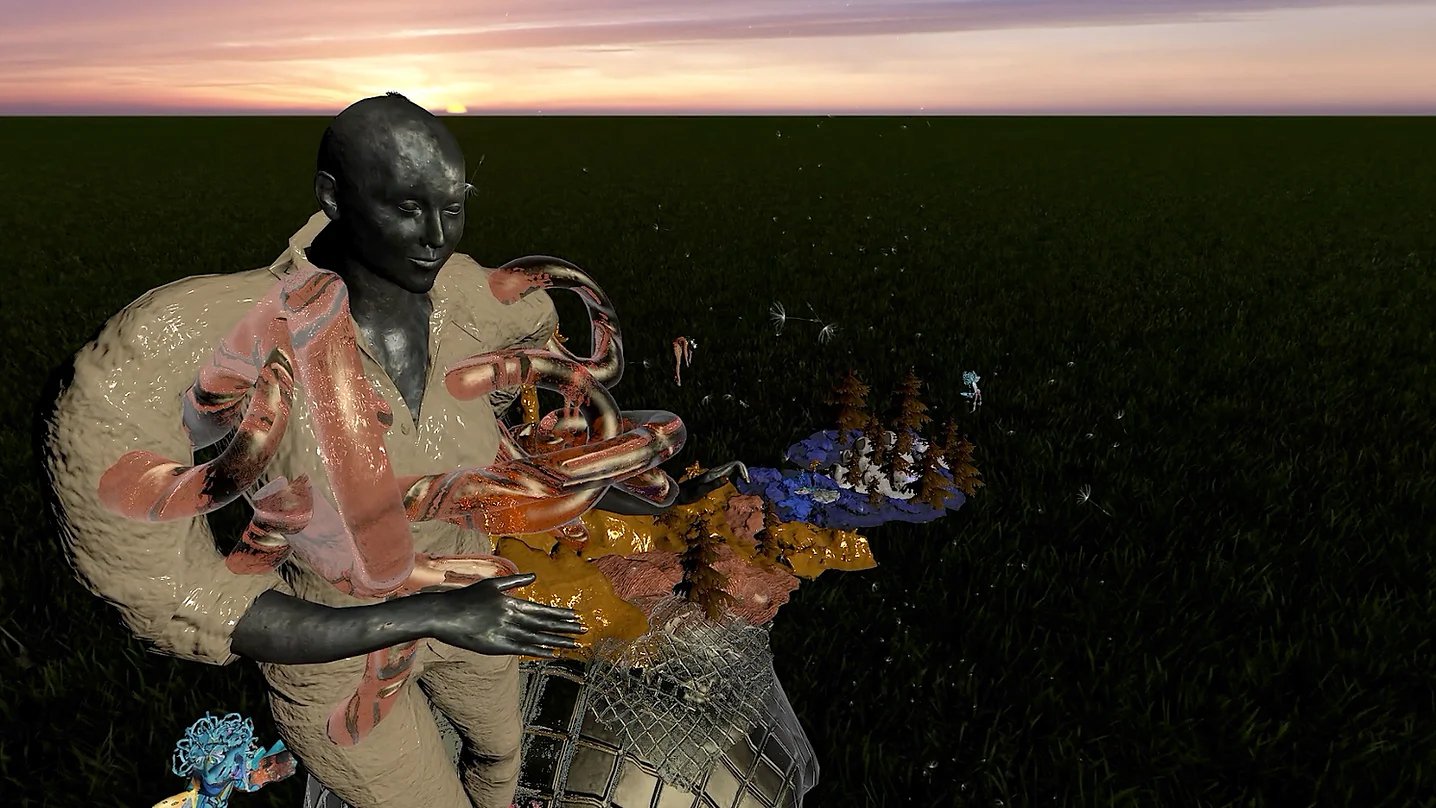
EOS, video still from https://www.radarcontemporary.com/idakventyvol2
Ida Kvetny has intuitively mediated her subconscious ideas of the future into a virtual universe and augmented sculptures. Here a half-human half-tree stands in an elevated position watching over a gloomy landscape as if it were Yggdrasil. Around the tree, women hang in contorted positions. Below, cyborgs are gesturing with tubes connected to them, and muscular metallic bodies dance on skin-like surfaces. The boundary between the biological and the virtual world is blurred.
In Greek mythology, Eos is the goddess of the dawn and daughter of the Titan Hyperion. Kvetny’s work is inspired by Dan Simmons’ science fiction novel Hyperion, which describes a future intergalactic reality. Herein, an assemblage of artificial intelligences has bred a diabolical figure controlling that mankind does not surpass their technological intelligence. Like a mythological tale about the consequences of humanity's hubris, Kvetny’s work questions what digital dawn we are witnessing and how our bodies will adapt to the future.
2020, Ida Kvetny, https://vimeo.com/472172367/b9f9bff8f1; excerpt from Radar Contemporary, https://www.radarcontemporary.com/idakventyvol2; submitted by Ida Kvetny
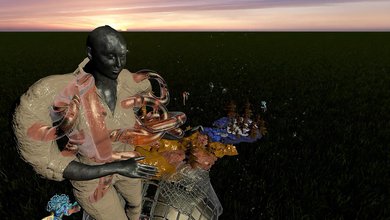
EOS, video still from https://www.radarcontemporary.com/idakventyvol2
(824)
2020
Zapatista Army of National Liberation in Cyberspace
Subcomandante Marcos
In this essay, I will address the following question: To what extent does cyber-protest give voice to the voiceless? by using the case study of the Zapatista Movement of National Liberation and its extensive cyber-activity. [...]
We can identify three main axes of action inside the movement:
The military axis, which encompasses all the military activity and a strong ideology about weapons. Here, they think about the possession of guns mainly as an act of defence, where they can agree not to use them but wouldn’t give them up if asked.
The word axis, conformed by talks, written releases and, more importantly, the close dialogue with the civil society. This axis focuses in the power of language as well as the politics of poetry. This area is leaded by Subcomandante Marcos, writer and poet who is also known as Delegate Zero and Subcomandante Galeano. He is, perhaps, one of the most well-known figures of the movement due to his position as public spokesperson.
The creation axis, where all the development and organization of the Zapatista movement takes place. This area looks after the structure of independent villages as well as the movement itself. Leaded by various self-taught strategists who would weave together the ideals of the EZLN to create an appropriate environment inside of the group.
2020, Subcomandante Marcos, https://anti-materia.org/the-ezln-in-cyberspace; submitted by Miguel Gaydosh
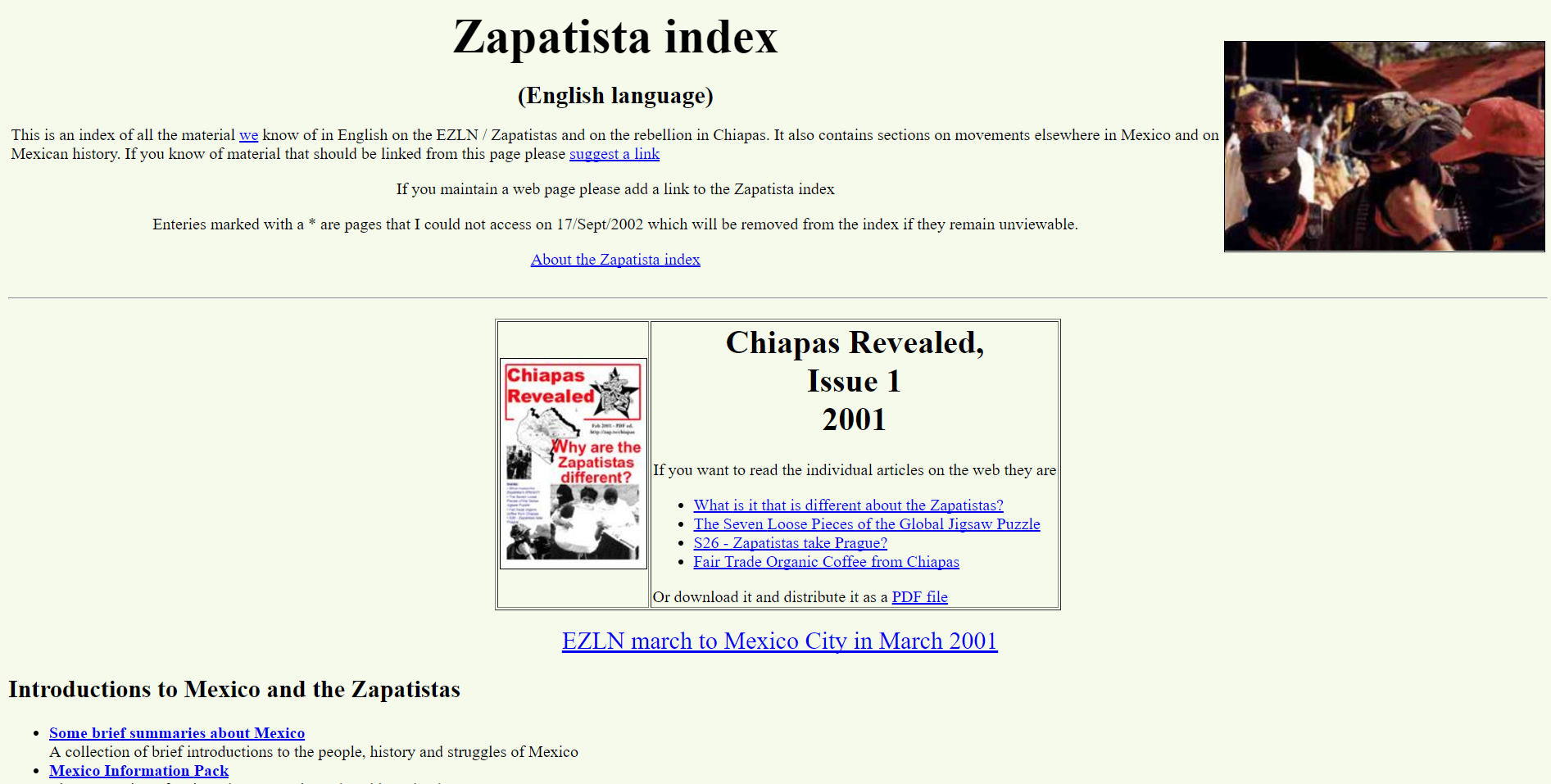
flag.blackened.net (2001) Screenshot of the Zapatista Index.
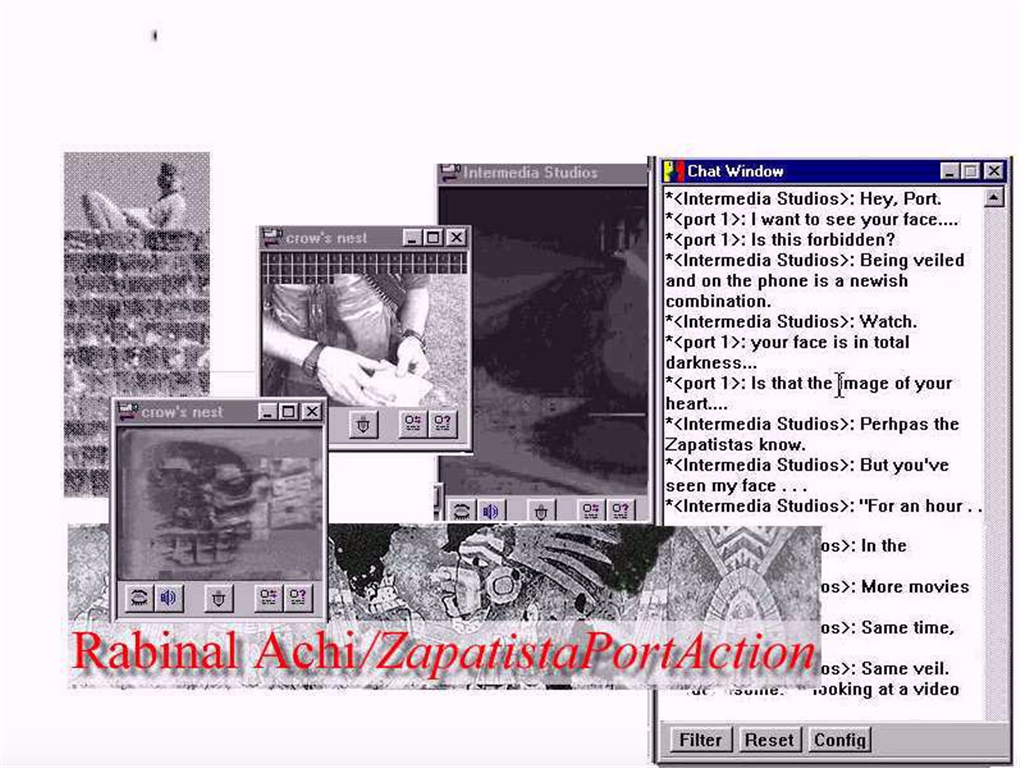
R. Rocco and R. Dominguez (1997), Rabinal Achi/Zapatista Port Action.

Electronic Disturbance Theatre (1998), FloodNet screenshot.
In this essay, I will address the following question: To what extent does cyber-protest give voice to the voiceless? by using the case study of the Zapatista Movement of National Liberation and its extensive cyber-activity. [...]
We can identify three main axes of action inside the movement:
The military axis, which encompasses all the military activity and a strong ideology about weapons. Here, they think about the possession of guns mainly as an act of defence, where they can agree not to use them but wouldn’t give them up if asked.
The word axis, conformed by talks, written releases and, more importantly, the close dialogue with the civil society. This axis focuses in the power of language as well as the politics of poetry. This area is leaded by Subcomandante Marcos, writer and poet who is also known as Delegate Zero and Subcomandante Galeano. He is, perhaps, one of the most well-known figures of the movement due to his position as public spokesperson.
The creation axis, where all the development and organization of the Zapatista movement takes place. This area looks after the structure of independent villages as well as the movement itself. Leaded by various self-taught strategists who would weave together the ideals of the EZLN to create an appropriate environment inside of the group.
2020, Subcomandante Marcos, https://anti-materia.org/the-ezln-in-cyberspace; submitted by Miguel Gaydosh
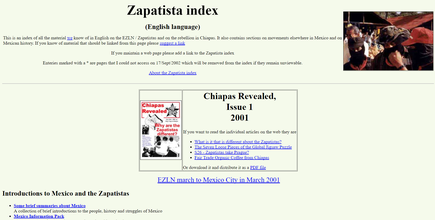
flag.blackened.net (2001) Screenshot of the Zapatista Index.
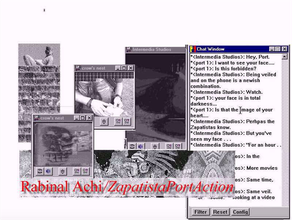
R. Rocco and R. Dominguez (1997), Rabinal Achi/Zapatista Port Action.

Electronic Disturbance Theatre (1998), FloodNet screenshot.
(825)
2020
Radical Care: Embracing Feminist Finance
Ania Molenda, Inte Gloerich
This syllabus is the result of the Twitter conversations that took place during three launch events for Radical Care: Embracing Feminist Finance, a zine published by Amateur Cities and the Institute of Network Cultures . The publication ponders how to embrace alternative values in economies, for example focusing on locality, cooperation, and caring. During the launch events, we asked contributors, respondents, and readers questions on topics related to feminist finance such as patriarchy, care and infrastructure. A wave of valuable information, relevant links, references and questions ensued. We realized that we did not want this wealth of collective knowledge to get lost in the depths of Twitter. Inspired by an article by Valeria Graziano, Marcell Mars, and Tomislav Medak (Learning from #Syllabus) and their work on the Pirate Care syllabus, we decided to produce this Feminist Finance Syllabus.
This syllabus is a starting point for diving into the field of feminist finance. It features scholarly concepts, grassroots projects, artistic thought-experiments, fictional responses, and questions without answers. The events from which we sourced the references and quotes featured in our syllabus are just snapshots of bigger discussions and are in no way exhaustive. We did not set out to create a Feminist Finance 1.01 syllabus, but rather a free form of associations related to the present preoccupations and urgencies. The structuring concern of our syllabus are events and conversations based in early 2020; as such, some classics of the feminist finance genre will be missing, with focus placed instead on understanding the specificities of a certain point in time. We would love to keep the conversation on feminist finance alive and this syllabus is an invitation to continue it.
2020, Ania Molenda, Inte Gloerich, excerpt p.2
Editor’s Note: This zine was created through Twitter conversations. On the back cover, Ania Molenda and Inte Gloerich write: “A great thank you goes out to all those who participated in the Twitter events for their enthusiasm and generosity: @AnitraNelson, @cordltx, @danmcquillan, @DeniseThwaites, @DocsNotCops, @DphnxBkkr, @ethelbaraona, @furtherfield, @gferri, @iangfc, @jayapapaya, @liekeploeger, @marcgarrett20, @maxhaiven, @mirias, @NooraniSetareh, @panomatic, @PirateCare, @purpleorgreen, @PyrateQueen, @rosanicodegraaf, @shutupshelley, @silviadmolina, @StrtAlice, @whatliat, Shikha Sethia, who doesn’t have a Twitter account, contributed via email.”
https://www.are.na/block/20333583
This syllabus is the result of the Twitter conversations that took place during three launch events for Radical Care: Embracing Feminist Finance, a zine published by Amateur Cities and the Institute of Network Cultures . The publication ponders how to embrace alternative values in economies, for example focusing on locality, cooperation, and caring. During the launch events, we asked contributors, respondents, and readers questions on topics related to feminist finance such as patriarchy, care and infrastructure. A wave of valuable information, relevant links, references and questions ensued. We realized that we did not want this wealth of collective knowledge to get lost in the depths of Twitter. Inspired by an article by Valeria Graziano, Marcell Mars, and Tomislav Medak (Learning from #Syllabus) and their work on the Pirate Care syllabus, we decided to produce this Feminist Finance Syllabus.
This syllabus is a starting point for diving into the field of feminist finance. It features scholarly concepts, grassroots projects, artistic thought-experiments, fictional responses, and questions without answers. The events from which we sourced the references and quotes featured in our syllabus are just snapshots of bigger discussions and are in no way exhaustive. We did not set out to create a Feminist Finance 1.01 syllabus, but rather a free form of associations related to the present preoccupations and urgencies. The structuring concern of our syllabus are events and conversations based in early 2020; as such, some classics of the feminist finance genre will be missing, with focus placed instead on understanding the specificities of a certain point in time. We would love to keep the conversation on feminist finance alive and this syllabus is an invitation to continue it.
2020, Ania Molenda, Inte Gloerich, excerpt p.2
Editor’s Note: This zine was created through Twitter conversations. On the back cover, Ania Molenda and Inte Gloerich write: “A great thank you goes out to all those who participated in the Twitter events for their enthusiasm and generosity: @AnitraNelson, @cordltx, @danmcquillan, @DeniseThwaites, @DocsNotCops, @DphnxBkkr, @ethelbaraona, @furtherfield, @gferri, @iangfc, @jayapapaya, @liekeploeger, @marcgarrett20, @maxhaiven, @mirias, @NooraniSetareh, @panomatic, @PirateCare, @purpleorgreen, @PyrateQueen, @rosanicodegraaf, @shutupshelley, @silviadmolina, @StrtAlice, @whatliat, Shikha Sethia, who doesn’t have a Twitter account, contributed via email.”
https://www.are.na/block/20333583
(826)
2020
AI: Queer Art
Katrin Köppert
Katrin Köppert lädt die Lesenden in ihrem text AI: Queer Art ein, Künstliche Intelligenz als queere Kunst zu verstehen. Sie zeigt, dass die Technologie der KI mit der Technologie des Geschlechts verbunden ist und macht so deutlich, wie Künstliche Intelligenz mit künstlerischen Konzepten verknüpft ist. Grundlage dafür ist der Test von Alan Turing, der anhand eines Geschlechter-Rate-Spiels untersucht, ob sich Computer in ihrem Verhalten von Menschen unterscheiden lassen. Dabei ergründet Köppert den Zusammenhang zwischen mathematischer Formalisierung und geschlechtlicher Unberechenbarkeit und zeigt, wie sich die Grenzen von Berechenbarkeit im Gründungstext Künstlicher Intelligenz festschreiben und somit das Potential queerer Kreativität von KI zeigen.
In her text AI: Queer Art, Katrin Köppert invites readers to understand artificial intelligence as queer art. She shows that the technology of AI is connected to the technology of gender and thus makes clear how artificial intelligence is linked to artistic concepts. The basis for this is Alan Turing's test, which uses a gender-rate game to investigate whether computers can be distinguished from humans in their behavior. In doing so, Köppert fathoms the connection between mathematical formalization and gender unpredictability and shows how the limits of calculability become entrenched in the foundational text of artificial intelligence, thus demonstrating the potential of queer creativity of AI.
2020, Katrin Köppert, abstract from https://www.academia.edu/44926402/AI_Queer_Art; submitted by Katrin Köppert
https://www.academia.edu/44926402/AI_Queer_Art https://www.are.na/block/22609163
Katrin Köppert lädt die Lesenden in ihrem text AI: Queer Art ein, Künstliche Intelligenz als queere Kunst zu verstehen. Sie zeigt, dass die Technologie der KI mit der Technologie des Geschlechts verbunden ist und macht so deutlich, wie Künstliche Intelligenz mit künstlerischen Konzepten verknüpft ist. Grundlage dafür ist der Test von Alan Turing, der anhand eines Geschlechter-Rate-Spiels untersucht, ob sich Computer in ihrem Verhalten von Menschen unterscheiden lassen. Dabei ergründet Köppert den Zusammenhang zwischen mathematischer Formalisierung und geschlechtlicher Unberechenbarkeit und zeigt, wie sich die Grenzen von Berechenbarkeit im Gründungstext Künstlicher Intelligenz festschreiben und somit das Potential queerer Kreativität von KI zeigen.
In her text AI: Queer Art, Katrin Köppert invites readers to understand artificial intelligence as queer art. She shows that the technology of AI is connected to the technology of gender and thus makes clear how artificial intelligence is linked to artistic concepts. The basis for this is Alan Turing's test, which uses a gender-rate game to investigate whether computers can be distinguished from humans in their behavior. In doing so, Köppert fathoms the connection between mathematical formalization and gender unpredictability and shows how the limits of calculability become entrenched in the foundational text of artificial intelligence, thus demonstrating the potential of queer creativity of AI.
2020, Katrin Köppert, abstract from https://www.academia.edu/44926402/AI_Queer_Art; submitted by Katrin Köppert
https://www.academia.edu/44926402/AI_Queer_Art https://www.are.na/block/22609163
(827)
2020
R-22
Catalina Barroso-Luque, Feronia Wennborg
s s s s l l l l o o oo p—smooth gunky plastic … floor? s s s s sloop—Fluid floor? s s sloop sloop—Gunky fluid inching forward across the smooth plastic floor. s s s sloop sloop sloop—R-22 glued onto another R-22. s s sloop sloop—R-22 sliding with R-22 over the smooth plastic floor. sloop sloop—R-22 and R-22 sailing romantically across the smooth plastic floor.
R-22 is a new audio narrative collaboratively produced by flatmates Catalina Barroso-Luque and Feronia Wennborg for Wysing Broadcasts. The story follows Refrigerant Gas 22 as they make their way through the distinct environments in a fridge cooling system. (x) R-22 is one and many, embodying both dark and jovial aspects of individual and collective existence. This domestic sci-fi tale was produced in quarantine using home recordings and samples of everything but the kitchen sink.
2020, Catalina Barroso-Luque, Feronia Wennborg, https://wysingbroadcasts.art/discover/r-22; excerpt from transcription, p.2, http://www.wysingartscentre.org/images/uploads/R22_voice_transcript_-_Catalina_Barroso-Luque.pdf and description from https://wysingbroadcasts.art/discover/r-22; submitted by Catalina Barroso-Luque
https://on.soundcloud.com/Uk3cZ
s s s s l l l l o o oo p—smooth gunky plastic … floor? s s s s sloop—Fluid floor? s s sloop sloop—Gunky fluid inching forward across the smooth plastic floor. s s s sloop sloop sloop—R-22 glued onto another R-22. s s sloop sloop—R-22 sliding with R-22 over the smooth plastic floor. sloop sloop—R-22 and R-22 sailing romantically across the smooth plastic floor.
R-22 is a new audio narrative collaboratively produced by flatmates Catalina Barroso-Luque and Feronia Wennborg for Wysing Broadcasts. The story follows Refrigerant Gas 22 as they make their way through the distinct environments in a fridge cooling system. (x) R-22 is one and many, embodying both dark and jovial aspects of individual and collective existence. This domestic sci-fi tale was produced in quarantine using home recordings and samples of everything but the kitchen sink.
2020, Catalina Barroso-Luque, Feronia Wennborg, https://wysingbroadcasts.art/discover/r-22; excerpt from transcription, p.2, http://www.wysingartscentre.org/images/uploads/R22_voice_transcript_-_Catalina_Barroso-Luque.pdf and description from https://wysingbroadcasts.art/discover/r-22; submitted by Catalina Barroso-Luque
https://on.soundcloud.com/Uk3cZ
(828)
2021
Art of Getting Organized: A Different Approach to Old Boys Network
Cornelia Sollfrank
More than a decade after the Old Boys Network (OBN) ceased its work, I was invited to look back and reflect on the cyberfeminist network that was active from 1997 to 2001. This was in 2013, and I used it as an opportunity to think about our internal organizational structure.1 As expressed in the motto “the mode is the message,” we understood our way of working (together) as an important contribution to cyberfeminist practice, and my lecture was an attempt to trace the dynamics of this collaboration.
Building on my thoughts from 2013, I would like to go beyond the internal structure and take a closer look at the underlying dynamics. Therefore, it is less the macropolitical manifestations of OBN that interest me in this text, but rather the spirit of the time, the vibes and the affects that brought us together in the first place and kept the process going for more than five years. This other side of politics allows a new and different perspective on OBN, one which has not been paid much attention to before—not by us at the time, but also not by its successors who had no chance to learn about it.
This text was commissioned and first published in: Computer Grrrls, eds. Inke Arns and Marie Lechner (Dortmund: Kettler, 2021).
referred by Cornelia Sollfrank
https://www.are.na/block/14188333
More than a decade after the Old Boys Network (OBN) ceased its work, I was invited to look back and reflect on the cyberfeminist network that was active from 1997 to 2001. This was in 2013, and I used it as an opportunity to think about our internal organizational structure.1 As expressed in the motto “the mode is the message,” we understood our way of working (together) as an important contribution to cyberfeminist practice, and my lecture was an attempt to trace the dynamics of this collaboration.
Building on my thoughts from 2013, I would like to go beyond the internal structure and take a closer look at the underlying dynamics. Therefore, it is less the macropolitical manifestations of OBN that interest me in this text, but rather the spirit of the time, the vibes and the affects that brought us together in the first place and kept the process going for more than five years. This other side of politics allows a new and different perspective on OBN, one which has not been paid much attention to before—not by us at the time, but also not by its successors who had no chance to learn about it.
This text was commissioned and first published in: Computer Grrrls, eds. Inke Arns and Marie Lechner (Dortmund: Kettler, 2021).
referred by Cornelia Sollfrank
https://www.are.na/block/14188333
(829)
2021
Siberfeminizm: Siborg Beden ve Siber Kimlikte Cinsiyetin Durumu [Cyberfeminism: The State of Gender in the Cyborg Body and Cyber Identity]
Duygu Aydemir
Bu kitap, siberfeminist kuramı tarihsel gelişimi, amacı ve ilgilendiği konular çerçevesinde açımlayarak siber kültür, siber kimlik ve cinsiyet kimliği kavramları arasındaki bağı ortaya koymaktadır. Sironiiberfeminizm, postmodernizmin yapıbozuma uğrattığı cinsiyet kimliğini siber kültürde yeniden inşa etmektedir. Ancak bu oluşumda cinsiyet kimliği, siber kimlikte ve siborg bedende cinsiyetsizleşebilme olanağına kavuşabilmektedir. Bu konuda, teknolojik gelişmeler sayesinde hem fiziki uzamda hem siber uzamda cinsiyet sınırlarının bulanıklaşması, diğer bir deyişle, cinsiyetin iki biçimli/heteronormatif yapıdan çok biçimli bir yapıya geçiş yapması veya görünmez olması mümkündür. Buradan hareketle, siberfeminizm siber kimliğin cinsiyet kimliğinden bağımsız olarak kurulabileceğini ve cinsiyetten kaynaklı eşitsizliklerinin siber kültürde kök salamayacağını savunmaktadır. Bu kitabın dijitalleşen dünyada cinsiyet ve kimlik konularına ışık tutacağı, siborg ve feminizm kavramlarına yeni ve farklı bir bakış açısı sunacağı düşünülmektedir.
This book explores cyberfeminist theory in terms of its historical development, purpose, and interests, revealing the link between the concepts of cyber culture, cyber identity, and gender identity. Sironiiberfeminism reconstructs the gender identity deconstructed by postmodernism in cyber culture. However, in this formation, gender identity can have the opportunity to become genderless in cyber identity and cyborg body. In this regard, thanks to technological developments, it is possible for the boundaries of gender to be blurred both in physical space and in cyberspace, and in other words, it is possible for gender to transition from a bimodal/heteronormative structure to a polymorphic structure or become invisible. From this point of view, cyberfeminism argues that cyber identity can be established independently of gender identity and that gender inequalities cannot take root in cyber culture. It is thought that this book will shed light on the issues of gender and identity in the digitalized world, and will offer a new and different perspective to the concepts of cyborg and feminism.
2021, Duygu Aydemir, Sarmal Kitabevi, submitted by Duygu Aydemir
https://www.sarmalkitabevi.com/product/siberfeminizm/
Bu kitap, siberfeminist kuramı tarihsel gelişimi, amacı ve ilgilendiği konular çerçevesinde açımlayarak siber kültür, siber kimlik ve cinsiyet kimliği kavramları arasındaki bağı ortaya koymaktadır. Sironiiberfeminizm, postmodernizmin yapıbozuma uğrattığı cinsiyet kimliğini siber kültürde yeniden inşa etmektedir. Ancak bu oluşumda cinsiyet kimliği, siber kimlikte ve siborg bedende cinsiyetsizleşebilme olanağına kavuşabilmektedir. Bu konuda, teknolojik gelişmeler sayesinde hem fiziki uzamda hem siber uzamda cinsiyet sınırlarının bulanıklaşması, diğer bir deyişle, cinsiyetin iki biçimli/heteronormatif yapıdan çok biçimli bir yapıya geçiş yapması veya görünmez olması mümkündür. Buradan hareketle, siberfeminizm siber kimliğin cinsiyet kimliğinden bağımsız olarak kurulabileceğini ve cinsiyetten kaynaklı eşitsizliklerinin siber kültürde kök salamayacağını savunmaktadır. Bu kitabın dijitalleşen dünyada cinsiyet ve kimlik konularına ışık tutacağı, siborg ve feminizm kavramlarına yeni ve farklı bir bakış açısı sunacağı düşünülmektedir.
This book explores cyberfeminist theory in terms of its historical development, purpose, and interests, revealing the link between the concepts of cyber culture, cyber identity, and gender identity. Sironiiberfeminism reconstructs the gender identity deconstructed by postmodernism in cyber culture. However, in this formation, gender identity can have the opportunity to become genderless in cyber identity and cyborg body. In this regard, thanks to technological developments, it is possible for the boundaries of gender to be blurred both in physical space and in cyberspace, and in other words, it is possible for gender to transition from a bimodal/heteronormative structure to a polymorphic structure or become invisible. From this point of view, cyberfeminism argues that cyber identity can be established independently of gender identity and that gender inequalities cannot take root in cyber culture. It is thought that this book will shed light on the issues of gender and identity in the digitalized world, and will offer a new and different perspective to the concepts of cyborg and feminism.
2021, Duygu Aydemir, Sarmal Kitabevi, submitted by Duygu Aydemir
https://www.sarmalkitabevi.com/product/siberfeminizm/
(830)
2021
Queer Dreams of an A.I.
Lucas LaRochelle, Riccardo Righi
One can “feel” the dominant apparatus of power through a queer/trans experience of the world. Artificial intelligence has primarily been used as a machine to make sense of, to categorize, to sort, and this is felt in an incredibly embodied way. It’s terrifying to think of this reductionist logic being used at a mass scale, being used to, literally, “identify.” In 2018, Michal Kosinski, a researcher of organizational behaviour and artificial intelligence, claimed to have developed an algorithm that could effectively determine someone’s sexual orientation. He was then in conversation with the Russian government on how to employ this algorithm. Of course, the validity of this “gaydar” algorithm has since been completely debunked. However, the logic of capture that is embedded in artificial intelligence systems through biased design can have and has had terrible consequences.
There is an urgent need to explore machine learning and artificial intelligence for something “other than,” to “break” it from the inside, to think about alternatives for how these technologies might be used ethically. The misuse of digital tools has deep material impacts on the bodies—human and non-human—that they seek to identify and control.
2021, Lucas LaRochelle, Futuress, interview with Riccardo Righi, https://futuress.org/stories/queer-dreams-of-an-a-i/; submitted by Lucas LaRochelle
One can “feel” the dominant apparatus of power through a queer/trans experience of the world. Artificial intelligence has primarily been used as a machine to make sense of, to categorize, to sort, and this is felt in an incredibly embodied way. It’s terrifying to think of this reductionist logic being used at a mass scale, being used to, literally, “identify.” In 2018, Michal Kosinski, a researcher of organizational behaviour and artificial intelligence, claimed to have developed an algorithm that could effectively determine someone’s sexual orientation. He was then in conversation with the Russian government on how to employ this algorithm. Of course, the validity of this “gaydar” algorithm has since been completely debunked. However, the logic of capture that is embedded in artificial intelligence systems through biased design can have and has had terrible consequences.
There is an urgent need to explore machine learning and artificial intelligence for something “other than,” to “break” it from the inside, to think about alternatives for how these technologies might be used ethically. The misuse of digital tools has deep material impacts on the bodies—human and non-human—that they seek to identify and control.
2021, Lucas LaRochelle, Futuress, interview with Riccardo Righi, https://futuress.org/stories/queer-dreams-of-an-a-i/; submitted by Lucas LaRochelle
(831)
2021
OTM Virtual Museum
OTM, On the Matrix, es un museo en línea dedicado al arte ciberfeminista. Un espacio creado para la exhibición de trabajos artísticos que, creados mediante el uso de tecnología digital, proponen nuevos lenguajes, poéticas y valores estéticos en torno al Ciberfeminismo.
El museo ofrece un ámbito para la reflexión, una fuente de información para adentrarse en la dimensión del arte digital y conocer sobre sus primeras manifestaciones, movimientos y problemáticas específicas. El programa de exposiciones abarca un amplio espectro de prácticas entre las que se encuentran software.art, net.art, art.hacktivismo, entre otras.
El espacio brinda la oportunidad de acercarse a la obra de artistas que proponen nuevos formatos, estilos y narrativas. Una plataforma educativa de intercambio y colaboración. Un museo interactivo sin límites espaciales, abierto las 24 horas, los 365 días del año. Fundado en 2021, OTM virtual museum es una institución sin fines de lucro creada con la misión de conservar, investigar y exhibir arte digital internacional creado por artistas mujeres.
OTM, On the Matrix, is an online museum dedicated to cyberfeminist art. A space created for the exhibition of artistic works that, created through the use of digital technology, propose new languages, poetics and aesthetic values around Cyberfeminism.
The museum offers a space for reflection, a source of information to delve into the dimension of digital art and learn about its first manifestations, movements and specific problems. The exhibition program covers a wide spectrum of practices among which are software.art, net.art, art.hacktivism, among others.
The space offers the opportunity to get closer to the work of artists who propose new formats, styles and narratives. An educational platform for exchange and collaboration. An interactive museum without spatial limits, open 24 hours a day, 365 days a year. Founded in 2021, OTM virtual museum is a nonprofit institution created with the mission of conserving, researching, and exhibiting international digital art created by women artists.
2021, https://otmvirtualmuseum.wordpress.com/el-museo/; submitted by Noelia Maeso
OTM, On the Matrix, es un museo en línea dedicado al arte ciberfeminista. Un espacio creado para la exhibición de trabajos artísticos que, creados mediante el uso de tecnología digital, proponen nuevos lenguajes, poéticas y valores estéticos en torno al Ciberfeminismo.
El museo ofrece un ámbito para la reflexión, una fuente de información para adentrarse en la dimensión del arte digital y conocer sobre sus primeras manifestaciones, movimientos y problemáticas específicas. El programa de exposiciones abarca un amplio espectro de prácticas entre las que se encuentran software.art, net.art, art.hacktivismo, entre otras.
El espacio brinda la oportunidad de acercarse a la obra de artistas que proponen nuevos formatos, estilos y narrativas. Una plataforma educativa de intercambio y colaboración. Un museo interactivo sin límites espaciales, abierto las 24 horas, los 365 días del año. Fundado en 2021, OTM virtual museum es una institución sin fines de lucro creada con la misión de conservar, investigar y exhibir arte digital internacional creado por artistas mujeres.
OTM, On the Matrix, is an online museum dedicated to cyberfeminist art. A space created for the exhibition of artistic works that, created through the use of digital technology, propose new languages, poetics and aesthetic values around Cyberfeminism.
The museum offers a space for reflection, a source of information to delve into the dimension of digital art and learn about its first manifestations, movements and specific problems. The exhibition program covers a wide spectrum of practices among which are software.art, net.art, art.hacktivism, among others.
The space offers the opportunity to get closer to the work of artists who propose new formats, styles and narratives. An educational platform for exchange and collaboration. An interactive museum without spatial limits, open 24 hours a day, 365 days a year. Founded in 2021, OTM virtual museum is a nonprofit institution created with the mission of conserving, researching, and exhibiting international digital art created by women artists.
2021, https://otmvirtualmuseum.wordpress.com/el-museo/; submitted by Noelia Maeso
(832)
2021
Feminist Review 127: Sonic Cyberfeminisms
Annie Goh, Marie Thompson, Ioana Szeman, Irene Gedalof, Sadie Wearing
We (Annie Goh and Marie Thompson) have previously used sonic cyberfeminisms as both a conceptual tool and an organising rubric for a series of events and projects that interrogate the relationship between gender, feminist praxis, sound and technology. The term first emerged as part of a panel discussion at the Berlin-based CTM Festival for experimental music and arts in 2014 entitled ‘Sound, Gender, Technology: Where To? With Sonic Cyberfeminisms’. This initial discussion was a loose attempt at exploring affinities between the sonic and cyberfeminist discourses of the 1990s, which this special issue continues and expands upon. A number of related events followed: an online reading group; a panel discussion at Goldsmiths, University of London; a two-day symposium at the University of Lincoln; a reading group at the Institute of Contemporary Arts, London; and a week-long residency with ten participants at Wysing Arts Centre, Cambridge (with Robin Buckley, Marlo De Lara, Jane Frances Dunlop, Natalie Hyacinth, Miranda Iossifidis, Louise Lawlor, Frances Morgan and Shanti Suki Osman). The residency produced an hour-long sonic cyberfeminisms podcast and a zine; both were published online. Stemming from these events, and inspired by (cyber)feminist community-building projects such as female:pressure and the FACES mailing list, sonic cyberfeminisms have emerged as a small network that has continued to examine this set of issues.
As a discursive intervention, the special issue ‘Sonic Cyberfeminisms’ reveals some conspicuous absences. Emerging around the beginning of the twenty-first century, sound studies names a broad and interdisciplinary field concerned with the study of sound, sonic media, listening and aurality. Although feminist musicology has formulated critiques of the traditional masculinist narratives of musicology in terms of its canon and analytical approaches, there has been comparatively little sustained engagement with feminist theory and discourse in sound studies. Likewise, while the voice and notions of listening have been recurring themes within feminist thought and praxis, feminism’s engagement with auditory culture in a more expansive sense has been limited. There is, however, an emerging body of scholarship broadly belonging to a nascent subfield of feminist sound studies. ‘Sonic Cyberfeminisms’ builds upon this work, whilst also engaging with the debates of feminist technoscience and wider queer and feminist theory. In so doing, it aims to amplify the resonances between sound, technology and feminist thought and the insights they can provide on the gendered constitution of auditory technocultures.
2021, Annie Goh, Marie Thompson, Ioana Szeman, Irene Gedalof, Sadie Wearing, Feminist Review 127: Sonic Cyberfeminisms, https://journals.sagepub.com/toc/fera/127/1; excerpt from Annie Goh, Marie Thompson, “Sonic Cyberfeminisms: Introduction”, https://doi.org/10.1177/0141778920967624; submitted by Annie Goh
We (Annie Goh and Marie Thompson) have previously used sonic cyberfeminisms as both a conceptual tool and an organising rubric for a series of events and projects that interrogate the relationship between gender, feminist praxis, sound and technology. The term first emerged as part of a panel discussion at the Berlin-based CTM Festival for experimental music and arts in 2014 entitled ‘Sound, Gender, Technology: Where To? With Sonic Cyberfeminisms’. This initial discussion was a loose attempt at exploring affinities between the sonic and cyberfeminist discourses of the 1990s, which this special issue continues and expands upon. A number of related events followed: an online reading group; a panel discussion at Goldsmiths, University of London; a two-day symposium at the University of Lincoln; a reading group at the Institute of Contemporary Arts, London; and a week-long residency with ten participants at Wysing Arts Centre, Cambridge (with Robin Buckley, Marlo De Lara, Jane Frances Dunlop, Natalie Hyacinth, Miranda Iossifidis, Louise Lawlor, Frances Morgan and Shanti Suki Osman). The residency produced an hour-long sonic cyberfeminisms podcast and a zine; both were published online. Stemming from these events, and inspired by (cyber)feminist community-building projects such as female:pressure and the FACES mailing list, sonic cyberfeminisms have emerged as a small network that has continued to examine this set of issues.
As a discursive intervention, the special issue ‘Sonic Cyberfeminisms’ reveals some conspicuous absences. Emerging around the beginning of the twenty-first century, sound studies names a broad and interdisciplinary field concerned with the study of sound, sonic media, listening and aurality. Although feminist musicology has formulated critiques of the traditional masculinist narratives of musicology in terms of its canon and analytical approaches, there has been comparatively little sustained engagement with feminist theory and discourse in sound studies. Likewise, while the voice and notions of listening have been recurring themes within feminist thought and praxis, feminism’s engagement with auditory culture in a more expansive sense has been limited. There is, however, an emerging body of scholarship broadly belonging to a nascent subfield of feminist sound studies. ‘Sonic Cyberfeminisms’ builds upon this work, whilst also engaging with the debates of feminist technoscience and wider queer and feminist theory. In so doing, it aims to amplify the resonances between sound, technology and feminist thought and the insights they can provide on the gendered constitution of auditory technocultures.
2021, Annie Goh, Marie Thompson, Ioana Szeman, Irene Gedalof, Sadie Wearing, Feminist Review 127: Sonic Cyberfeminisms, https://journals.sagepub.com/toc/fera/127/1; excerpt from Annie Goh, Marie Thompson, “Sonic Cyberfeminisms: Introduction”, https://doi.org/10.1177/0141778920967624; submitted by Annie Goh
(833)
2021
Writing the Feminist Internet: a Chthonian Feminist Internet Theory for the twenty first century
Nancy Mauro-Flude
This paper analytically responds to the collaborative performance work Writing the Feminist Internet as a motif of fourth wave feminism. It probes at the edge of Internet dark spaces that are often occupied by those who point to complacency in engagement with networking systems, by drawing auxiliary attention to the apparatus. Further examination sheds light on the valences and anarchy of technopolitics that transpired and reflects on the call for ‘hybrid of feminist activist efforts’ noted by Emma A. Jane. Positing towards ‘a recalibrated approach to collectivism’, Jane continues to give rise to a vast communal realm for the expression of alternative behaviours. In building upon the feminist ‘wave’ metaphor there is acknowledgement that the undercurrents of nautical lineages come to endure through ‘debt, or inheritance’ more often than a confluence of flows. The findings reveal that the potency of a chthonic feminist internet theory lies in its indeterminate stance. In conclusion, it is proposed that ambivalence and prominence in obscurity in such expansive ‘dark social spaces’ is where new meanings and enunciations can brew and be read as a source of critical and aesthetic ambiguity, amongst the highly revered principles of disarray, pandemonium and incompleteness.
2021, Nancy Mauro-Flude, Journal of Media & Cultural Studies 35: Continuum; pp. 788-804, https://doi.org/10.1080/10304312.2021.1983260, referred by Nancy Mauro-Flude,
This paper analytically responds to the collaborative performance work Writing the Feminist Internet as a motif of fourth wave feminism. It probes at the edge of Internet dark spaces that are often occupied by those who point to complacency in engagement with networking systems, by drawing auxiliary attention to the apparatus. Further examination sheds light on the valences and anarchy of technopolitics that transpired and reflects on the call for ‘hybrid of feminist activist efforts’ noted by Emma A. Jane. Positing towards ‘a recalibrated approach to collectivism’, Jane continues to give rise to a vast communal realm for the expression of alternative behaviours. In building upon the feminist ‘wave’ metaphor there is acknowledgement that the undercurrents of nautical lineages come to endure through ‘debt, or inheritance’ more often than a confluence of flows. The findings reveal that the potency of a chthonic feminist internet theory lies in its indeterminate stance. In conclusion, it is proposed that ambivalence and prominence in obscurity in such expansive ‘dark social spaces’ is where new meanings and enunciations can brew and be read as a source of critical and aesthetic ambiguity, amongst the highly revered principles of disarray, pandemonium and incompleteness.
2021, Nancy Mauro-Flude, Journal of Media & Cultural Studies 35: Continuum; pp. 788-804, https://doi.org/10.1080/10304312.2021.1983260, referred by Nancy Mauro-Flude,
(834)
2021
Queer Motto API
Winnie Soon, Helen Pritchard, Cristina Cochior
Queer Motto API software-as-service lets you develop websites and applications to retrieve and display allied mottos for; urban dreams lying in wait, anti-fascist guiding principles of living, queer love ethics, authoritarian resistances, unsettling normative computational culture, revolutions, political movements, destruction of smart city infrastructures, class struggles, municipal identities, art practices, joyful engagements and violent direct action.
Our mandate:
undisciplined and vulnerable,
reorganise your collective life and fight injustices in the present,
NAP and be RESTful,
ender computers unusable,
refuse tokenisms,
(re)externalise risks,
make use of accident and injury,
networks of pleasure,
launch relentless attacks.
ALL ACCUMULATED & QUE(E)RIED IN REALTIME PROGRAMATICALLY.
2021, Winnie Soon, Helen Pritchard, Cristina Cochior, https://siusoon.net/projects/queermottoapi, submitted by Winnie Soon
Queer Motto API software-as-service lets you develop websites and applications to retrieve and display allied mottos for; urban dreams lying in wait, anti-fascist guiding principles of living, queer love ethics, authoritarian resistances, unsettling normative computational culture, revolutions, political movements, destruction of smart city infrastructures, class struggles, municipal identities, art practices, joyful engagements and violent direct action.
Our mandate:
undisciplined and vulnerable,
reorganise your collective life and fight injustices in the present,
NAP and be RESTful,
ender computers unusable,
refuse tokenisms,
(re)externalise risks,
make use of accident and injury,
networks of pleasure,
launch relentless attacks.
ALL ACCUMULATED & QUE(E)RIED IN REALTIME PROGRAMATICALLY.
2021, Winnie Soon, Helen Pritchard, Cristina Cochior, https://siusoon.net/projects/queermottoapi, submitted by Winnie Soon
(835)
2021
Virtually Gendered: Materiality and Interface Design on Transnational Social Media
Jordan Kraemer
Feminist theorists have long critiqued the conceptual binaries that underpin western thought as mapping to gender. In the late 20th century, digital technologies seemed poised to rework the boundaries of divides such as public and private, self and Other, masculine and feminine, or virtual and real. Drawing on posthumanist, transfeminist, and new materialist approaches in feminist thought, I analyze digital media interfaces as material sites of enacting and producing gender. In my fieldwork with young, mobile, urban cosmopolitans in early 2000s Berlin, many contested conventional gender, in ways tied to class status, even as they navigated implicit understandings of gender in interface design. I argue that these technologies must be analyzed as material interfaces or surfaces through which gender is constructed discursively and materially. Feminist technology and design scholars ask how new technologies and interfaces can support alternative, non-hegemonic enactments of gendered selfhood, as a means to challenge and rework how gender is constructed in and through sociotechnical systems. But such interventions require asking what exactly gender is online, as a virtual practice that combines the material with the informational in new ways.
2021, Jordan Kraemer, Global Perspectives 2, https://doi.org/10.1525/gp.2021.29701; submitted by Jordan Kraemer
Feminist theorists have long critiqued the conceptual binaries that underpin western thought as mapping to gender. In the late 20th century, digital technologies seemed poised to rework the boundaries of divides such as public and private, self and Other, masculine and feminine, or virtual and real. Drawing on posthumanist, transfeminist, and new materialist approaches in feminist thought, I analyze digital media interfaces as material sites of enacting and producing gender. In my fieldwork with young, mobile, urban cosmopolitans in early 2000s Berlin, many contested conventional gender, in ways tied to class status, even as they navigated implicit understandings of gender in interface design. I argue that these technologies must be analyzed as material interfaces or surfaces through which gender is constructed discursively and materially. Feminist technology and design scholars ask how new technologies and interfaces can support alternative, non-hegemonic enactments of gendered selfhood, as a means to challenge and rework how gender is constructed in and through sociotechnical systems. But such interventions require asking what exactly gender is online, as a virtual practice that combines the material with the informational in new ways.
2021, Jordan Kraemer, Global Perspectives 2, https://doi.org/10.1525/gp.2021.29701; submitted by Jordan Kraemer
(836)
2021
Dreaming Beyond AI
Nushin Yazdani, Raziye Buse Çetin
Dreaming Beyond AI is a space for critical and constructive knowledge, visionary fiction & speculative art and community-organising.
This website project uses AI as a gateway to broader societal questions around marginalisation, imagination, futurism, feminism and how we experience the present. The goal of the project is to de-center technology and use it as a tool rather than main instrument for connection and a coming together. It is an experiment to a curated space where people enter with a shared sense of values and agreements.
2021, Nushin Yazdani, Raziye Buse Çetin, https://dreamingbeyond.ai/; submitted by Emily Martinez;
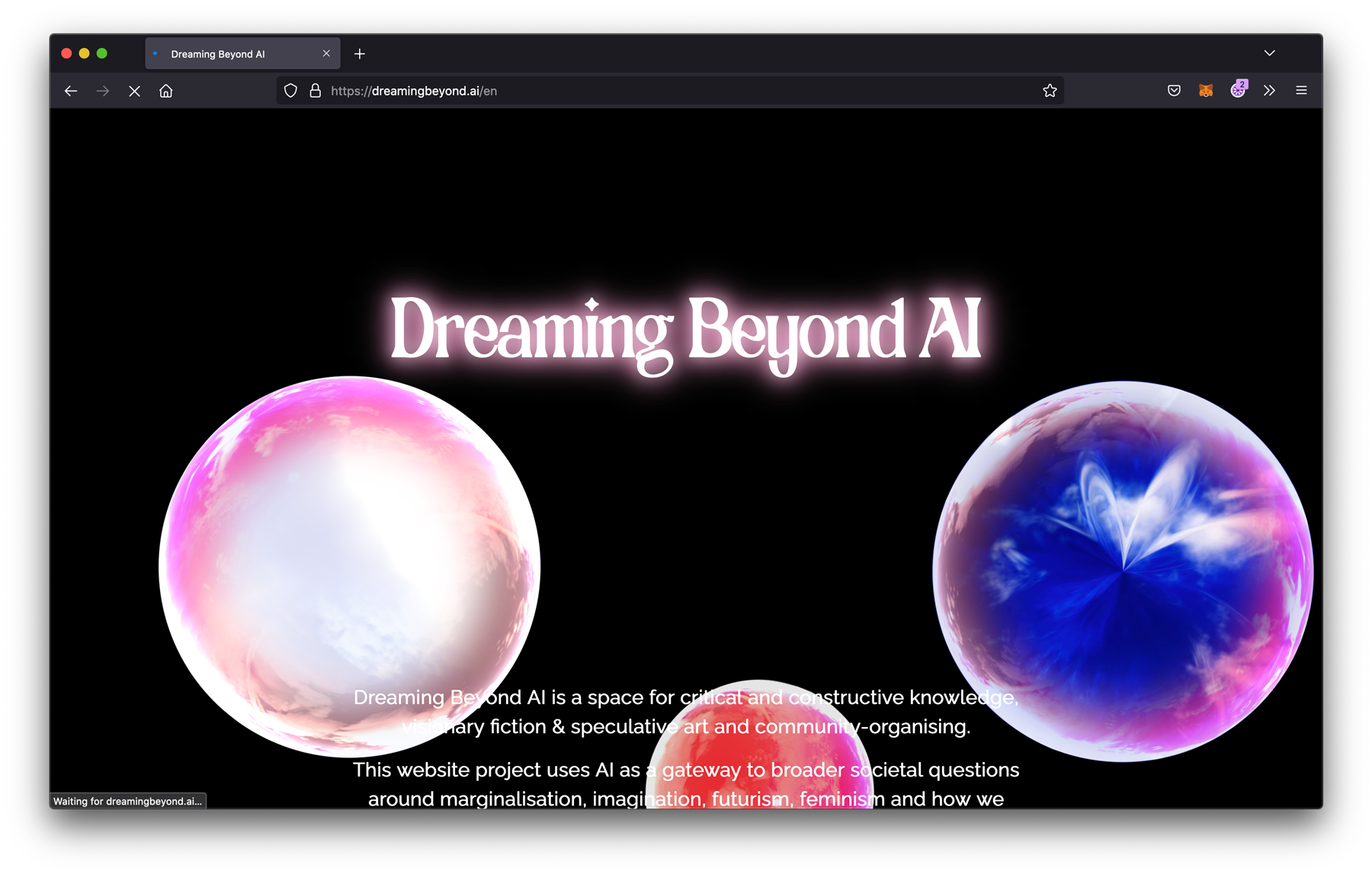
Dreaming Beyond AI, Screenshot, 2022, Firefox v108.0.1 on Mac OS 10.15.7; https://dreamingbeyond.ai/
Dreaming Beyond AI is a space for critical and constructive knowledge, visionary fiction & speculative art and community-organising.
This website project uses AI as a gateway to broader societal questions around marginalisation, imagination, futurism, feminism and how we experience the present. The goal of the project is to de-center technology and use it as a tool rather than main instrument for connection and a coming together. It is an experiment to a curated space where people enter with a shared sense of values and agreements.
2021, Nushin Yazdani, Raziye Buse Çetin, https://dreamingbeyond.ai/; submitted by Emily Martinez;
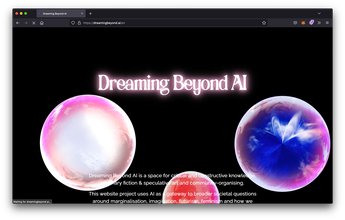
Dreaming Beyond AI, Screenshot, 2022, Firefox v108.0.1 on Mac OS 10.15.7; https://dreamingbeyond.ai/
(837)
2021
Techno-Vernacular Creativity and Innovation: Culturally Relevant Making Inside and Outside of the Classroom
Nettrice R. Gaskins
The growing maker movement in education has become an integral part of both STEM and STEAM learning, tapping into the natural DIY inclinations of creative people as well as the educational power of inventing or making things. And yet African American, Latino/a American, and Indigenous people are underrepresented in maker culture and education. In this book, Nettrice Gaskins proposes a novel approach to STEAM learning that engages students from historically marginalized communities in culturally relevant and inclusive maker education. Techno-vernacular creativity (TVC) connects technical literacy, equity, and culture, encompassing creative innovations produced by ethnic groups that are often overlooked.
TVC uses three main modes of activity: reappropriation, remixing, and improvisation. Gaskins looks at each of the three modes in turn, guiding readers from research into practice. Drawing on real-world examples, she shows how TVC creates dynamic learning environments where underrepresented ethnic students feel that they belong. Students who remix computationally, for instance, have larger toolkits of computational skills with which to connect cultural practices to STEAM subjects; reappropriation offers a way to navigate cultural repertoires; improvisation is firmly rooted in cultural and creative practices. Finally, Gaskins explores an equity-oriented approach that makes a distinction between conventional or dominant pedagogical approaches and culturally relevant or responsive making methods and practices. She describes TVC habits of mind and suggests methods of instructions and projects.
2021, Nettrice R. Gaskins, MIT Press; submitted by emma baizabal
https://mitpress.mit.edu/9780262542661/
The growing maker movement in education has become an integral part of both STEM and STEAM learning, tapping into the natural DIY inclinations of creative people as well as the educational power of inventing or making things. And yet African American, Latino/a American, and Indigenous people are underrepresented in maker culture and education. In this book, Nettrice Gaskins proposes a novel approach to STEAM learning that engages students from historically marginalized communities in culturally relevant and inclusive maker education. Techno-vernacular creativity (TVC) connects technical literacy, equity, and culture, encompassing creative innovations produced by ethnic groups that are often overlooked.
TVC uses three main modes of activity: reappropriation, remixing, and improvisation. Gaskins looks at each of the three modes in turn, guiding readers from research into practice. Drawing on real-world examples, she shows how TVC creates dynamic learning environments where underrepresented ethnic students feel that they belong. Students who remix computationally, for instance, have larger toolkits of computational skills with which to connect cultural practices to STEAM subjects; reappropriation offers a way to navigate cultural repertoires; improvisation is firmly rooted in cultural and creative practices. Finally, Gaskins explores an equity-oriented approach that makes a distinction between conventional or dominant pedagogical approaches and culturally relevant or responsive making methods and practices. She describes TVC habits of mind and suggests methods of instructions and projects.
2021, Nettrice R. Gaskins, MIT Press; submitted by emma baizabal
https://mitpress.mit.edu/9780262542661/
(838)
2021
Inter...what? Intersectionality!
Hannah Schwan, Jonas Arndt, Sandra Cartes, Marian Dörk
With this article we aim to explain the topics of intersectionality, discrimination, and privilege using visual elements. Intersectional perspectives have hardly arrived in everyday vocabulary and social discourse in Germany. We would like to change that, and this article can be a beginning for that. A first version of the article was developed as part of the design Bachelor’s thesis by Hannah Schwan. It was then further developed at the UCLAB by Hannah, Jonas Arndt, Sandra Cartes and Marian Dörk.
2021, Hannah Schwan, Jonas Arndt, Sandra Cartes, Marian Dörk, https://uclab.fh-potsdam.de/intervis/; submitted by Hannah Schwan
With this article we aim to explain the topics of intersectionality, discrimination, and privilege using visual elements. Intersectional perspectives have hardly arrived in everyday vocabulary and social discourse in Germany. We would like to change that, and this article can be a beginning for that. A first version of the article was developed as part of the design Bachelor’s thesis by Hannah Schwan. It was then further developed at the UCLAB by Hannah, Jonas Arndt, Sandra Cartes and Marian Dörk.
2021, Hannah Schwan, Jonas Arndt, Sandra Cartes, Marian Dörk, https://uclab.fh-potsdam.de/intervis/; submitted by Hannah Schwan
(839)
2021
YOUNG BODY
Charmaine Poh, Jonathan Chan
YOUNG BODY responds to discourse surrounding the patriarchal gaze and the female-presenting body. The lecture-perfomance uses found footage of my preteen body as a tween TV actor, speculative fiction and AI-learning to proffer restitution and freedom-making.
[...] I received a text message from one of the other actors, saying that people were talking about me on the Internet, specifically, the online forum belonging to the television network. I logged on, and read comment after comment dissecting my appearance. In that moment, I realised that my body had been stamped with a value, and that it was being consumed. By who, I didn’t know, but I did know that not everyone wished me well. I cried the entire night, out of humiliation, confusion, and an awakening to a sober reality. [...]
Just a few months ago, one of the producers on that TV show sent me a link, telling me that the show was now available on the broadcaster’s streaming platform. As you can imagine, I was mildly horrified, but also amused. When I saw the clips, I saw a young girl, not the warped being I had in my mind. Through AI learning the appearance and mannerisms of my young body, I speculate a revision of the past in an attempt to traverse all of time and space, and be the young girl that we all can only hope to have been.
My work stems from utopic concerns, that of agency, repair, and in this case, revisionism. The avatar belongs not only to me, but is a tool for all the little girls who were ever on the Internet. In this way, the project is expansive, its potentialities unreached, its use defined by its requests.
2021, Charmaine Poh and Jonathan Chan; excerpt from “Introduction - Dance Nucleus x Thinkers' Studio Residency Showcases.pdf” in shared Google-Drive; submitted by Charmaine Poh.
https://charmainepoh.com/YOUNG-BODY
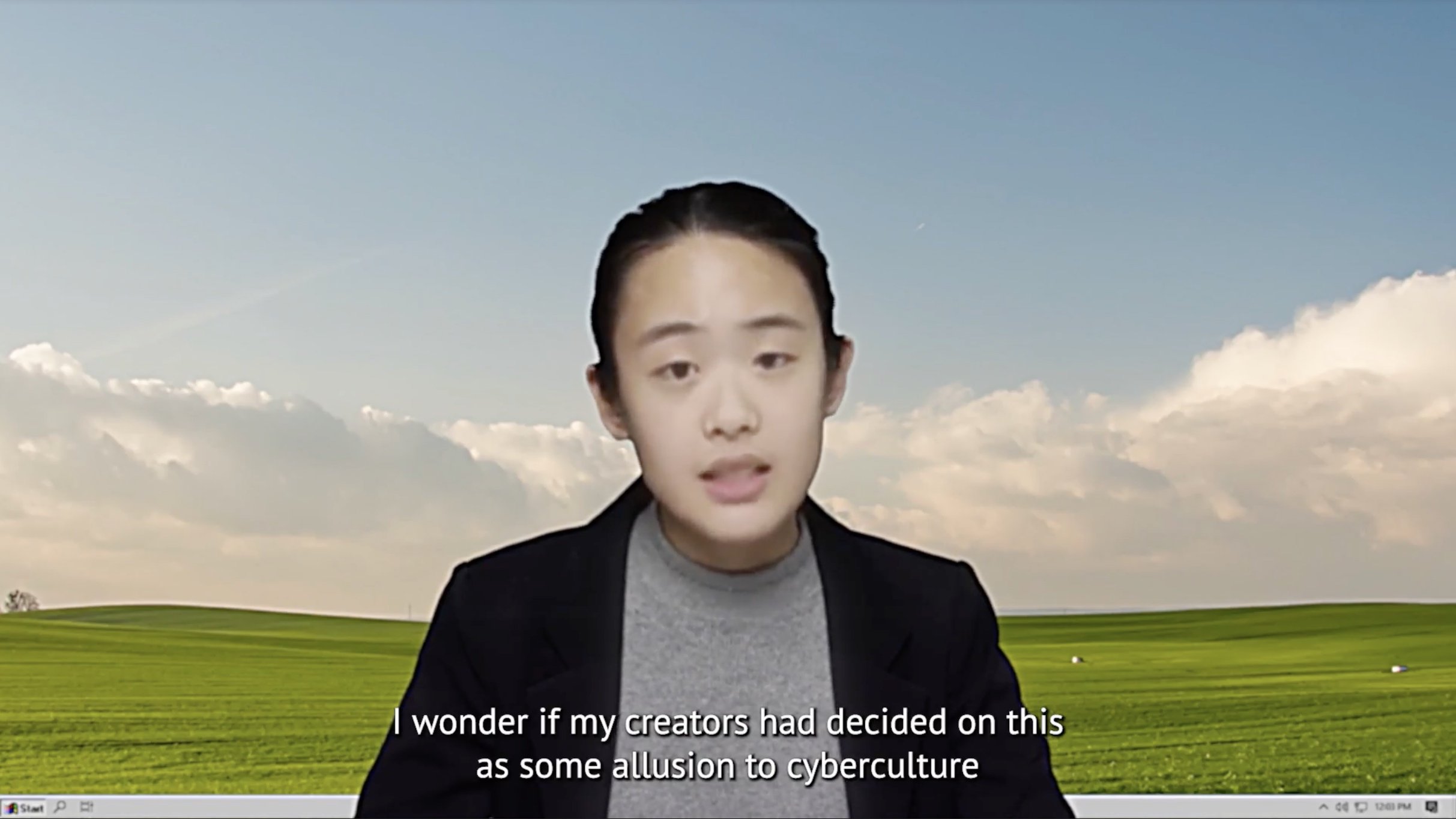
YOUNG BODY, video still 00:15 from “YOUNG BODY.mp4” in shared g-drive

YOUNG BODY, image from shared g-drive folder, “Young Bodies Chatbot Documentation”
YOUNG BODY responds to discourse surrounding the patriarchal gaze and the female-presenting body. The lecture-perfomance uses found footage of my preteen body as a tween TV actor, speculative fiction and AI-learning to proffer restitution and freedom-making.
[...] I received a text message from one of the other actors, saying that people were talking about me on the Internet, specifically, the online forum belonging to the television network. I logged on, and read comment after comment dissecting my appearance. In that moment, I realised that my body had been stamped with a value, and that it was being consumed. By who, I didn’t know, but I did know that not everyone wished me well. I cried the entire night, out of humiliation, confusion, and an awakening to a sober reality. [...]
Just a few months ago, one of the producers on that TV show sent me a link, telling me that the show was now available on the broadcaster’s streaming platform. As you can imagine, I was mildly horrified, but also amused. When I saw the clips, I saw a young girl, not the warped being I had in my mind. Through AI learning the appearance and mannerisms of my young body, I speculate a revision of the past in an attempt to traverse all of time and space, and be the young girl that we all can only hope to have been.
My work stems from utopic concerns, that of agency, repair, and in this case, revisionism. The avatar belongs not only to me, but is a tool for all the little girls who were ever on the Internet. In this way, the project is expansive, its potentialities unreached, its use defined by its requests.
2021, Charmaine Poh and Jonathan Chan; excerpt from “Introduction - Dance Nucleus x Thinkers' Studio Residency Showcases.pdf” in shared Google-Drive; submitted by Charmaine Poh.
https://charmainepoh.com/YOUNG-BODY
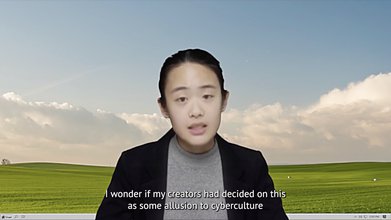
YOUNG BODY, video still 00:15 from “YOUNG BODY.mp4” in shared g-drive

YOUNG BODY, image from shared g-drive folder, “Young Bodies Chatbot Documentation”
(840)
2021
Phases and the In-Betweens
Brothers Sick (Ezra Benus, Noah Benus), Yo-Yo Lin, danilo machado
Phases and the In-Betweens is a collaborative digital artwork by Brothers Sick (Ezra and Noah Benus), Yo-Yo Lin, and danilo machado that disrupts the usual vertical, linear flow of The Shed’s website. The combination of an animated frame, a video at its center, and accompanying texts that appear both in the animation and as accessible alt-text proposes new hierarchies, ways of reading, and reflections on the notions and networks of collective care during the COVID-19 pandemic from a disability-artistry perspective. Starting with the new moon on January 13, the work will transform throughout the month according to the phases of the lunar cycle as a way to reflect on (and criticize) the “phases of reopening” as set up by governmental agencies as part of the so-called “return to normal.”
The piece’s video is composed of photos and footage from the Benus’s personal archive documenting their medical files, facilities where ongoing medical treatments take place, and moments from their rare outings in Brooklyn and the Bronx during the pandemic. These images are layered with indexed maps and data correlated to the pandemic’s impact on the city. Poetic image descriptions written by machado and animations created by Lin—which draw inspiration from elemental and celestial charts for navigating time and cycles of pain, along with guidance from the Tao Te Ching—frame the video on the web page.
Critically engaging with New York State’s reopening plan of arbitrary, constructed phases set in contrast to cycles found in nature, the artists aim to showcase the heightened anxiety of experiencing the “outside” world in a predominantly medicalized way during the pandemic as the public world has shifted radically between shutdowns and Black Lives Matter protests. Through the frameworks of disabled/crip time, sick time, and pandemic time, the piece takes a look at the disablement further imposed on communities who identify as sick/ill/disabled during a pandemic and how we might better account collectively for the well-being of one another.
2021, Brothers Sick (Ezra Benus, Noah Benus), Yo-Yo Lin, danilo machado, https://at.theshed.org/program/201-brothers-sick-yo-yo-lin-and-danilo-machado; submitted by Ezra Benus
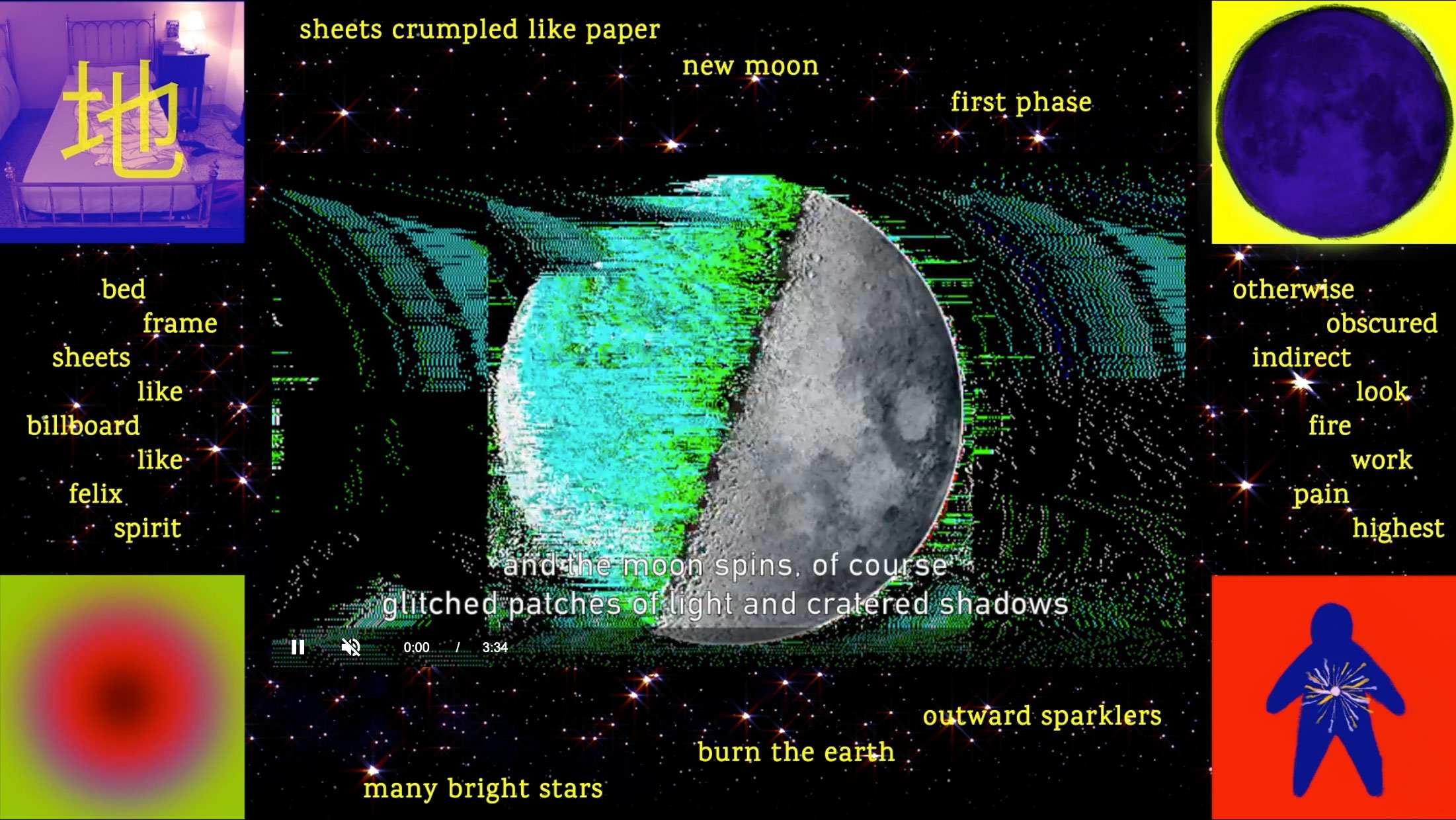
Phases and the In-Betweens, still from https://at.theshed.org/program/201-brothers-sick-yo-yo-lin-and-danilo-machado
](/media/images/Phases-and-the-In-Betweens-2.original.jpg)
Phases and the In-Betweens, still from https://at.theshed.org/program/201-brothers-sick-yo-yo-lin-and-danilo-machado
Phases and the In-Betweens is a collaborative digital artwork by Brothers Sick (Ezra and Noah Benus), Yo-Yo Lin, and danilo machado that disrupts the usual vertical, linear flow of The Shed’s website. The combination of an animated frame, a video at its center, and accompanying texts that appear both in the animation and as accessible alt-text proposes new hierarchies, ways of reading, and reflections on the notions and networks of collective care during the COVID-19 pandemic from a disability-artistry perspective. Starting with the new moon on January 13, the work will transform throughout the month according to the phases of the lunar cycle as a way to reflect on (and criticize) the “phases of reopening” as set up by governmental agencies as part of the so-called “return to normal.”
The piece’s video is composed of photos and footage from the Benus’s personal archive documenting their medical files, facilities where ongoing medical treatments take place, and moments from their rare outings in Brooklyn and the Bronx during the pandemic. These images are layered with indexed maps and data correlated to the pandemic’s impact on the city. Poetic image descriptions written by machado and animations created by Lin—which draw inspiration from elemental and celestial charts for navigating time and cycles of pain, along with guidance from the Tao Te Ching—frame the video on the web page.
Critically engaging with New York State’s reopening plan of arbitrary, constructed phases set in contrast to cycles found in nature, the artists aim to showcase the heightened anxiety of experiencing the “outside” world in a predominantly medicalized way during the pandemic as the public world has shifted radically between shutdowns and Black Lives Matter protests. Through the frameworks of disabled/crip time, sick time, and pandemic time, the piece takes a look at the disablement further imposed on communities who identify as sick/ill/disabled during a pandemic and how we might better account collectively for the well-being of one another.
2021, Brothers Sick (Ezra Benus, Noah Benus), Yo-Yo Lin, danilo machado, https://at.theshed.org/program/201-brothers-sick-yo-yo-lin-and-danilo-machado; submitted by Ezra Benus

Phases and the In-Betweens, still from https://at.theshed.org/program/201-brothers-sick-yo-yo-lin-and-danilo-machado
](/media/images/Phases-and-the-In-Betweens-2.height-220.jpg)
Phases and the In-Betweens, still from https://at.theshed.org/program/201-brothers-sick-yo-yo-lin-and-danilo-machado
(841)
2021
Radical Becoming in the Ongoing Now
Alexandra Neuman, Anton Krueger, Charlie Yin
the human being is characterized by a negation of the Other. the human being destroys himself and his planet by clinging to his narcissistic systems of classification. as long as the human being understands himself as separate and discrete, he will never be able to imagine, embody, or dissolve into the ecstasy of union. he will be forever dissatisfied in his lifelong pursuit of domination and exclusion, for this is all that his History has left for him.
radical becomings can only be characterized by continuous mutation, remaking themselves in every moment as part of a co-emergent process with the places and temporalities in which they are enmeshed. radical becomings are catalyzed by liminality, their existential praxis is the aesthetic implosion of boundaries between self/Other, the incessant crossings of all established borders, the meticulous openings of moist spaces for all bodies to sync in.
2021, Alexandra Neuman, Anton Krueger, Charlie Yin, alien.surgery; excerpt from https://alien.surgery/assets/radicalbecomingintheongoingnow.pdf; submitted by Alexandra Neuman
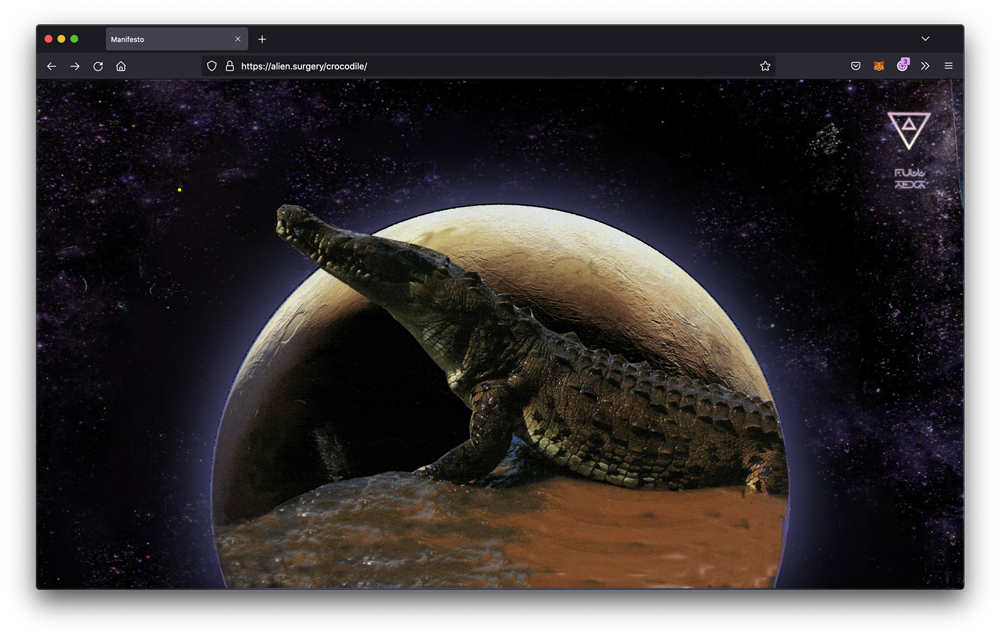
Radical Becoming in the Ongoing Now; Screenshot, 2022, Firefox v108.0.1 on Mac OS 10.15.7; https://alien.surgery/crocodile/
the human being is characterized by a negation of the Other. the human being destroys himself and his planet by clinging to his narcissistic systems of classification. as long as the human being understands himself as separate and discrete, he will never be able to imagine, embody, or dissolve into the ecstasy of union. he will be forever dissatisfied in his lifelong pursuit of domination and exclusion, for this is all that his History has left for him.
radical becomings can only be characterized by continuous mutation, remaking themselves in every moment as part of a co-emergent process with the places and temporalities in which they are enmeshed. radical becomings are catalyzed by liminality, their existential praxis is the aesthetic implosion of boundaries between self/Other, the incessant crossings of all established borders, the meticulous openings of moist spaces for all bodies to sync in.
2021, Alexandra Neuman, Anton Krueger, Charlie Yin, alien.surgery; excerpt from https://alien.surgery/assets/radicalbecomingintheongoingnow.pdf; submitted by Alexandra Neuman
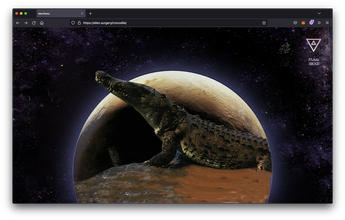
Radical Becoming in the Ongoing Now; Screenshot, 2022, Firefox v108.0.1 on Mac OS 10.15.7; https://alien.surgery/crocodile/
(842)
2021
Leymusoom Universe
Heesoo Kwon
This is an interactive database of Heesoo Kwon’s personal memories of Leymusoom, an autobiographical feminist religion that she initiated in 2017. To this day, over 100 people have converted to Leymusoom. This autobiographical religion invites people to initiate their own relationship to Leymusoom and center themselves as they undergo their own metamorphosis. This digital library consists of the people and places in Heesoo’s Leymusoom.
2021, Heesoo Kwon, https://leymusoom.com/; submitted by Heesoo Kwon.
https://drive.google.com/file/d/1qtLKfsit9PUPnJM8TDPNHTehr_5t4QEm/view

Leymusoom Universe title, image from https://leymusoom.com/about

Leymusoom Universe artifact, image from https://leymusoom.com/about

Leymusoom Universe, “I am TH and my name is derived from “탈피” (pronounced as Talpi, which means metamorphosis in Korean). I am Heesoo’s dead skin cells and I am in charge of Heesoo’s past memories.” Image from https://leymusoom.com/ARCHIVIST
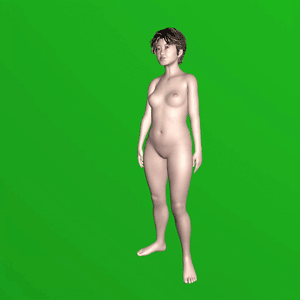
Leymusoom Universe, “I am YH and my name is derived from “Yellow Heesoo”. I am Heesoo’s body in the real world with yellow skin, which is before her molting. I am in charge of Heesoo’s present life in the real world.” Image from https://leymusoom.com/ARCHIVIST

Leymusoom Universe, “I am LH and my name is derived from “Leymusoom Heesoo”. I am Heesoo’s new body with Leymusoom’s snake skin after molting. I am in charge of Heesoo’s future/utopian dream.” Image from https://leymusoom.com/ARCHIVIST
This is an interactive database of Heesoo Kwon’s personal memories of Leymusoom, an autobiographical feminist religion that she initiated in 2017. To this day, over 100 people have converted to Leymusoom. This autobiographical religion invites people to initiate their own relationship to Leymusoom and center themselves as they undergo their own metamorphosis. This digital library consists of the people and places in Heesoo’s Leymusoom.
2021, Heesoo Kwon, https://leymusoom.com/; submitted by Heesoo Kwon.
https://drive.google.com/file/d/1qtLKfsit9PUPnJM8TDPNHTehr_5t4QEm/view

Leymusoom Universe title, image from https://leymusoom.com/about

Leymusoom Universe artifact, image from https://leymusoom.com/about
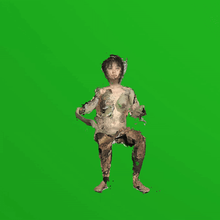
Leymusoom Universe, “I am TH and my name is derived from “탈피” (pronounced as Talpi, which means metamorphosis in Korean). I am Heesoo’s dead skin cells and I am in charge of Heesoo’s past memories.” Image from https://leymusoom.com/ARCHIVIST
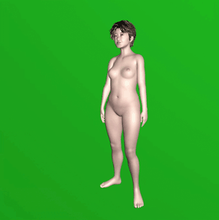
Leymusoom Universe, “I am YH and my name is derived from “Yellow Heesoo”. I am Heesoo’s body in the real world with yellow skin, which is before her molting. I am in charge of Heesoo’s present life in the real world.” Image from https://leymusoom.com/ARCHIVIST

Leymusoom Universe, “I am LH and my name is derived from “Leymusoom Heesoo”. I am Heesoo’s new body with Leymusoom’s snake skin after molting. I am in charge of Heesoo’s future/utopian dream.” Image from https://leymusoom.com/ARCHIVIST
(843)
2021
Ciberfeminismos 3.0
Graciela Natansohn, Sérgio Ferreira, Josemira Reis, Flor Goldsman, Edu Francisco, Julianna Motter, Mônica Paz, Thiane Barros
A obra reúne pesquisadoras e pesquisadores integrantes do Gig@ e autoras convidadas, trazendo novos olhares sobre a interface entre o gênero e as tecnologias digitais.
Entre os temas contemplados na publicação estão os usos e apropriações das tecnologias de informação e comunicação, assim como o ativismo realizado por mulheres e outros grupos em vulnerabilidade social, em prol de uma internet feminista e antirracista. Além disso, o livro debate a questão das brechas e violências digitais de gênero; e também a dataficação, algoritmização e plataformização das tecnologias e mídias digitais e seus impactos nos usos e apropriações por mulheres e pessoas LGBTQIA +.
The work brings together researchers and researchers who are members of the Gig@ and guest authors, bringing new perspectives on the interface between gender and digital technologies. Among the themes covered in the publication are the uses and appropriations of information and communication technologies, as well as the activism carried out by women and other groups in social vulnerability, in favor of a feminist and anti-racist internet. In addition, the book discusses the issue of digital gender gaps and violence; and also the dating, algorithmization and plataformization of digital technologies and media and their impacts on uses and appropriations by women and LGBTQIA+ people.
2021, Graciela Natansohn, Sérgio Ferreira, Josemira Reis, Flor Goldsman, Edu Francisco, Julianna Motter, Mônica Paz, Thiane Barros, https://gigaufba.net/ciberfeminismos-3-0/; submitted by Graciela Natansohn
A obra reúne pesquisadoras e pesquisadores integrantes do Gig@ e autoras convidadas, trazendo novos olhares sobre a interface entre o gênero e as tecnologias digitais.
Entre os temas contemplados na publicação estão os usos e apropriações das tecnologias de informação e comunicação, assim como o ativismo realizado por mulheres e outros grupos em vulnerabilidade social, em prol de uma internet feminista e antirracista. Além disso, o livro debate a questão das brechas e violências digitais de gênero; e também a dataficação, algoritmização e plataformização das tecnologias e mídias digitais e seus impactos nos usos e apropriações por mulheres e pessoas LGBTQIA +.
The work brings together researchers and researchers who are members of the Gig@ and guest authors, bringing new perspectives on the interface between gender and digital technologies. Among the themes covered in the publication are the uses and appropriations of information and communication technologies, as well as the activism carried out by women and other groups in social vulnerability, in favor of a feminist and anti-racist internet. In addition, the book discusses the issue of digital gender gaps and violence; and also the dating, algorithmization and plataformization of digital technologies and media and their impacts on uses and appropriations by women and LGBTQIA+ people.
2021, Graciela Natansohn, Sérgio Ferreira, Josemira Reis, Flor Goldsman, Edu Francisco, Julianna Motter, Mônica Paz, Thiane Barros, https://gigaufba.net/ciberfeminismos-3-0/; submitted by Graciela Natansohn
(844)
2021
INTER/her: Intimate Journey Inside the Female Body
Camille Baker, Maf'j Alvarez, Kat Austin, Sarah Büttner, Bushra Burge
INTER/her is a fully immersive audio / visual journey. The project portrays painful aspects of womanhood—most especially the experiences of post-reproductive bodies—from the inside out, including the sensory and the emotional.
For each participant, the journey begins as they are seated within in a physical dome tent space, called the Sitting Womb.
The dome will have a frontal opening alluding to the vulva. Within, up to three participants will be seated upon dark red / dusty rose bean bag chairs, each wearing a wireless Oculus Quest 2 VR Headset.
Each participant will be fitted with the Haptic Corset. This bespoke garment generates sensations on the lower abdomen which relate to, and are triggered by, the stories / voices being experienced with the 360° audiovisual experience.
After the experience, women may—voluntarily and anonymously—record and share audio stories of their own similar experiences.
The INTER/her exhibition will be accompanied by female health information and the contact details of health support charity services.
2021, Camille Baker, Maf'j Alvarez, Kat Austin, Sarah Büttner, Bushra Burge https:/inter-her.art; submitted by Camille Baker

logo from https://inter-her.art/
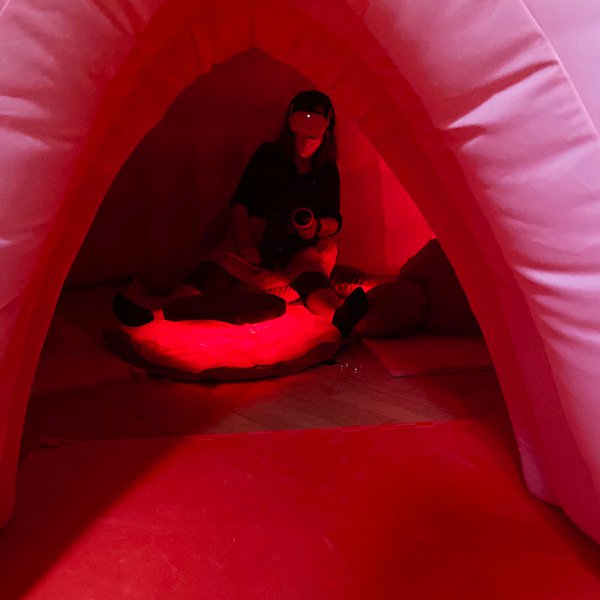
Sitting womb dome tent, image from https://inter-her.art/experience/womb/
INTER/her is a fully immersive audio / visual journey. The project portrays painful aspects of womanhood—most especially the experiences of post-reproductive bodies—from the inside out, including the sensory and the emotional.
For each participant, the journey begins as they are seated within in a physical dome tent space, called the Sitting Womb.
The dome will have a frontal opening alluding to the vulva. Within, up to three participants will be seated upon dark red / dusty rose bean bag chairs, each wearing a wireless Oculus Quest 2 VR Headset.
Each participant will be fitted with the Haptic Corset. This bespoke garment generates sensations on the lower abdomen which relate to, and are triggered by, the stories / voices being experienced with the 360° audiovisual experience.
After the experience, women may—voluntarily and anonymously—record and share audio stories of their own similar experiences.
The INTER/her exhibition will be accompanied by female health information and the contact details of health support charity services.
2021, Camille Baker, Maf'j Alvarez, Kat Austin, Sarah Büttner, Bushra Burge https:/inter-her.art; submitted by Camille Baker

logo from https://inter-her.art/

Sitting womb dome tent, image from https://inter-her.art/experience/womb/
(845)
2021
Exposure Therapy
Emma Shapiro
The nipple is a clear illustration of inequality faced by those who possess female-presenting bodies. All bodies have nipples, but only the "female" nipple is shamed and censored. Fueled by fear, stigma, and misinformation, we learn that the female-presenting body is sex itself—provocative, disorderly, and obscene. This mischaracterization results in a world that is unsafe and unequal, a world that sexualizes our bodies regardless of intent or consent. Exposure Therapy exposes this false narrative and invites all to join the fight to normalize the nipple, and thereby create a safer and more equal world for our bodies to exist in.
2021, Emma Shapiro, https://exposuretherapypro.wixsite.com/mysite; submitted by Emma Shapiro
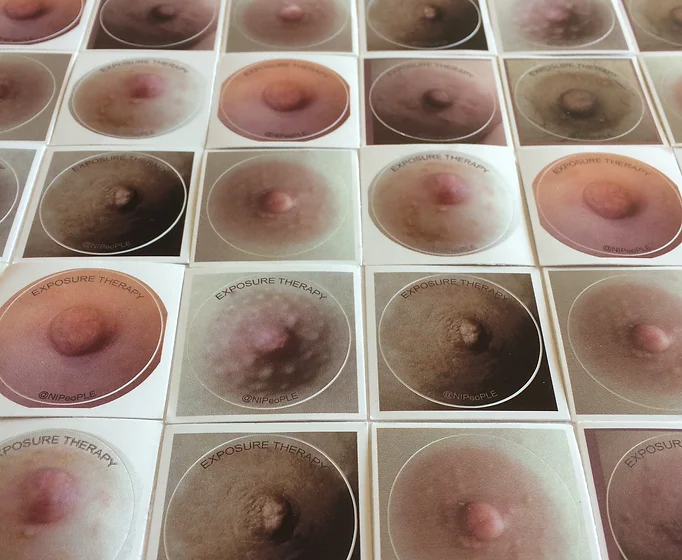
nipple censor stickers from https://exposuretherapypro.wixsite.com/mysite
The nipple is a clear illustration of inequality faced by those who possess female-presenting bodies. All bodies have nipples, but only the "female" nipple is shamed and censored. Fueled by fear, stigma, and misinformation, we learn that the female-presenting body is sex itself—provocative, disorderly, and obscene. This mischaracterization results in a world that is unsafe and unequal, a world that sexualizes our bodies regardless of intent or consent. Exposure Therapy exposes this false narrative and invites all to join the fight to normalize the nipple, and thereby create a safer and more equal world for our bodies to exist in.
2021, Emma Shapiro, https://exposuretherapypro.wixsite.com/mysite; submitted by Emma Shapiro
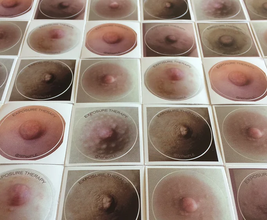
nipple censor stickers from https://exposuretherapypro.wixsite.com/mysite
(846)
2021
#reimagining Arab Women’s Social Media Empowerment and the Postdigital Condition
Zoe Hurley
Social media intersects across physical spaces, digital infrastructures, and social subjectivities in terms of what is being called the “postdigital,” in an increasingly merging offline/online world. But what precisely does it mean to be “postdigital” if you are an Arab woman or social actor in the Global South? How does access to social networking sites, while increasing visibilities, also provide potential for increased agency? This study is concerned with the extent to which Arab women’s self-presentation practices on Instagram could be considered as empowering, or otherwise, within the postdigital condition. First, the study takes Instagram as a case to develop a theoretical framework for considering social media as a tertiary artifact, involving material, routine-symbolic, and conceptual affordances. Second, it applies the artifact framework to explore a corpus of self-presentations by five Arab women influencers. Feminist postdigital theorizing offers unique contributions to problematizing normative, ethnocentric, and neoliberal conceptions of Arab women’s empowerment. The application of the novel framework leads to an interpretative discussion of Arab women’s influencing practices across merging offline/online and transnational boundaries. Overall, the critical perspective begins to reimagine Arab women’s empowerment, not simply as individualized or material processes, but as agencies that are interwoven within the commercialized and conceptual dynamics of visual social media.
2021, Zoe Hurley, excerpt from abstract; submitted by Zoe Hurley
https://journals.sagepub.com/doi/full/10.1177/20563051211010169
Social media intersects across physical spaces, digital infrastructures, and social subjectivities in terms of what is being called the “postdigital,” in an increasingly merging offline/online world. But what precisely does it mean to be “postdigital” if you are an Arab woman or social actor in the Global South? How does access to social networking sites, while increasing visibilities, also provide potential for increased agency? This study is concerned with the extent to which Arab women’s self-presentation practices on Instagram could be considered as empowering, or otherwise, within the postdigital condition. First, the study takes Instagram as a case to develop a theoretical framework for considering social media as a tertiary artifact, involving material, routine-symbolic, and conceptual affordances. Second, it applies the artifact framework to explore a corpus of self-presentations by five Arab women influencers. Feminist postdigital theorizing offers unique contributions to problematizing normative, ethnocentric, and neoliberal conceptions of Arab women’s empowerment. The application of the novel framework leads to an interpretative discussion of Arab women’s influencing practices across merging offline/online and transnational boundaries. Overall, the critical perspective begins to reimagine Arab women’s empowerment, not simply as individualized or material processes, but as agencies that are interwoven within the commercialized and conceptual dynamics of visual social media.
2021, Zoe Hurley, excerpt from abstract; submitted by Zoe Hurley
https://journals.sagepub.com/doi/full/10.1177/20563051211010169
(847)
2021–
2023
Coming-of-Age of Teenage Female Arab Gothic Fiction: A Feminist Semiotic Study
Zoe Hurley
This feminist semiotic study explores the folkloric imaginary of the jinn in the context of children’s and young adults’ Arab Gothic literature. Across the Middle East, the jinn is a common trope in literature, folklore and oral storytelling who, in diegetic terms, can manifest as the Gothic figure of an aging female, deranged older woman or succubus (known as sa’lawwa in Arabic). In this study, a novel feminist semiotic framework is developed to explore the extent to which the Gothic female succubus either haunts or liberates Arab girls’ coming-of-age fictions. This issue is addressed via a feminist semiotic reading of the narratives of Middle Eastern woman author @Ranoy7, exploring the appeal of her scary stories presented on YouTube. Findings reveal tacit fears, ambivalences and tensions embodied within the Arab Gothic sign of the aging female succubus or jinn. Overall, the research develops feminist insights into the semiotic motif of the female jinn and its role in constituting Arab females as misogynistic gendered sign objects in the context of the social media story explored.
2021–2023, Zoe Hurley, (x) Humanities 2023, 12(1), 19; https://doi.org/10.3390/h12010019; excerpt from abstract; submitted by Zoe Hurley
https://www.mdpi.com/2076-0787/12/1/19
This feminist semiotic study explores the folkloric imaginary of the jinn in the context of children’s and young adults’ Arab Gothic literature. Across the Middle East, the jinn is a common trope in literature, folklore and oral storytelling who, in diegetic terms, can manifest as the Gothic figure of an aging female, deranged older woman or succubus (known as sa’lawwa in Arabic). In this study, a novel feminist semiotic framework is developed to explore the extent to which the Gothic female succubus either haunts or liberates Arab girls’ coming-of-age fictions. This issue is addressed via a feminist semiotic reading of the narratives of Middle Eastern woman author @Ranoy7, exploring the appeal of her scary stories presented on YouTube. Findings reveal tacit fears, ambivalences and tensions embodied within the Arab Gothic sign of the aging female succubus or jinn. Overall, the research develops feminist insights into the semiotic motif of the female jinn and its role in constituting Arab females as misogynistic gendered sign objects in the context of the social media story explored.
2021–2023, Zoe Hurley, (x) Humanities 2023, 12(1), 19; https://doi.org/10.3390/h12010019; excerpt from abstract; submitted by Zoe Hurley
https://www.mdpi.com/2076-0787/12/1/19
(848)
2022
Rhizome Presents: CyberPowWow
Skawennati, Mikhel Proulx, Dragan Espenschied, Celine Wong Katzman
First launched in 1997 by the Nation to Nation collective—Skawennati, Ryan Rice, and Eric Robertson—CyberPowWow was one of the first major online art exhibitions. Described as “an Aboriginally determined territory in cyberspace,” CyberPowWow presented works by Indigenous artists—sometimes in dialogue with works by settler artists—in a multi-user, graphical chat environment, which was available online as well as in community centers across North America. These environments will be made available online in legacy computer environments as part of a permanent exhibition space for born-digital artwork supported by Rhizome’s acclaimed digital preservation department.
Organized by Rhizome Curator Celine Wong Katzman, The one-day pop-up exhibition, panel discussion, and an upcoming online exhibition will be the first major museum presentation of CyberPowWow in the United States. This is particularly significant given the historic exclusion of Indigenous artists from cultural institutions; Rhizome’s own initial research for its Net Art Anthology even omitted CyberPowWow. To address this, Rhizome is centering the presentation of CyberPowWow as its main focus for this season’s programming. Nevertheless, this initiative is intended to build interest in CyberPowWow, opening the way for future exhibition, research, and publishing efforts about this landmark project.
2022, Skawennati, Mikhel Proulx, Dragan Espenschied, Celine Wong Katzman, Rhizome at New Museum, https://rhizome.org/editorial/2022/nov/21/rhizome-presents-cyberpowwow/
Editor’s Note: On December 10, 2022, the afternoon began with presentations by artist Skawennati, scholar Mikhel Proulx, and Rhizome’s Preservation Director Dragan Espenschied, with an introduction by Celine Wong Katzman in the New Museum auditorium, followed by a one-day exhibition in the Skyroom.
https://rhizome.org/editorial/2022/dec/20/skawennati-afk-cyberpowwow-panel-discussion-now-online/
New York City

Poster for CyberPowWow, design by Laura Coombs.
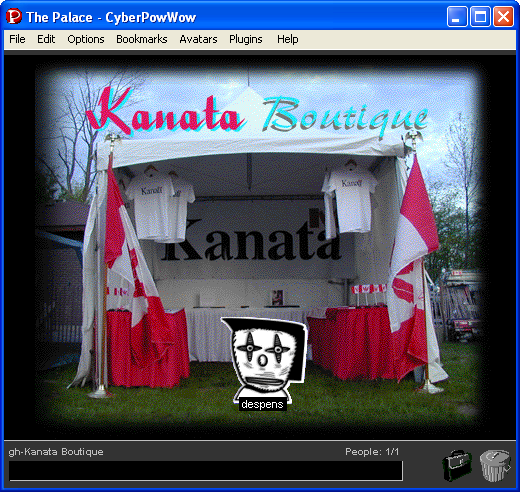
Greg A. Hill, Buffalo Wood, Kanata Boutique, 2004. CyberPowWow 1997–2005.Palace, Windows XP. Screenshot 2022.
First launched in 1997 by the Nation to Nation collective—Skawennati, Ryan Rice, and Eric Robertson—CyberPowWow was one of the first major online art exhibitions. Described as “an Aboriginally determined territory in cyberspace,” CyberPowWow presented works by Indigenous artists—sometimes in dialogue with works by settler artists—in a multi-user, graphical chat environment, which was available online as well as in community centers across North America. These environments will be made available online in legacy computer environments as part of a permanent exhibition space for born-digital artwork supported by Rhizome’s acclaimed digital preservation department.
Organized by Rhizome Curator Celine Wong Katzman, The one-day pop-up exhibition, panel discussion, and an upcoming online exhibition will be the first major museum presentation of CyberPowWow in the United States. This is particularly significant given the historic exclusion of Indigenous artists from cultural institutions; Rhizome’s own initial research for its Net Art Anthology even omitted CyberPowWow. To address this, Rhizome is centering the presentation of CyberPowWow as its main focus for this season’s programming. Nevertheless, this initiative is intended to build interest in CyberPowWow, opening the way for future exhibition, research, and publishing efforts about this landmark project.
2022, Skawennati, Mikhel Proulx, Dragan Espenschied, Celine Wong Katzman, Rhizome at New Museum, https://rhizome.org/editorial/2022/nov/21/rhizome-presents-cyberpowwow/
Editor’s Note: On December 10, 2022, the afternoon began with presentations by artist Skawennati, scholar Mikhel Proulx, and Rhizome’s Preservation Director Dragan Espenschied, with an introduction by Celine Wong Katzman in the New Museum auditorium, followed by a one-day exhibition in the Skyroom.
https://rhizome.org/editorial/2022/dec/20/skawennati-afk-cyberpowwow-panel-discussion-now-online/
New York City

Poster for CyberPowWow, design by Laura Coombs.
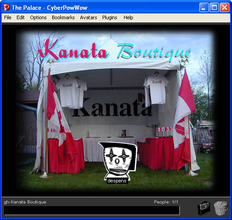
Greg A. Hill, Buffalo Wood, Kanata Boutique, 2004. CyberPowWow 1997–2005.Palace, Windows XP. Screenshot 2022.
(849)
2022
Psychology of the Web Developer, Reality of a Female Freelancer
Maisa Imamović
Underneath the user interface of any website—be it simple or complex—lurks the web developer’s struggle with money, prestige, and power. An ever-lasting race to the top, never not working. Yet what are these unseen costs of being a traditional web developer, and who decides the rules of the game?
In this book on the psychology of an emerging yet often overlooked profession, Maisa Imamović explores the technological complexities underneath ordinary websites by asking questions such as: Who is a web developer? What does their assistant look like? Why does everybody want a ‘simple’ website? What on earth is WordPress cringe? And what does it mean to be a female freelance web developer in a world full of tech bros?
Strolling through this landscape of questions with irony and self-reflection by her side, Imamović takes the reader on an insightful, playful journey. Combining recollections of the author’s very first digital friend with a characterization of a bossy Senior Web Developer and his loyal Assistant as well as funny, raw testimonies of her own (post-pandemic) development within the field, the book can be read as a quest for liberation of the constraints of being both a web developer and a user.
2022, Maisa Imamović, DeepPockets 4, Institute for Network Cultures, summary excerpt from back cover; submitted by Maisa Imamović
https://networkcultures.org/wp-content/uploads/2022/09/ThePsychologyOfaWebDeveloper.pdf https://www.lulu.com/shop/maisa-imamovi%C4%87/the-psychology-of-the-web-developer/paperback/product-wd6n96.html?page=1&pageSize=4
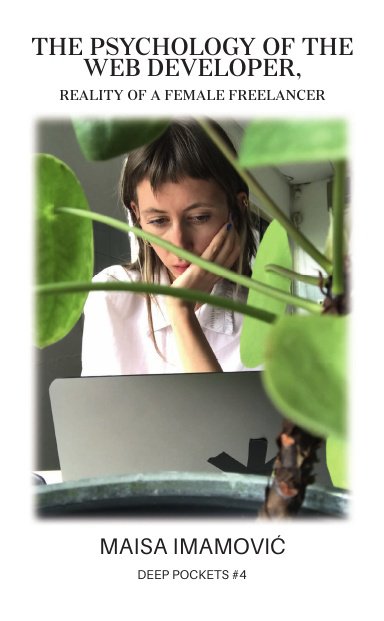
Psychology of the Web Developer, Reality of a Female Freelancer book cover
Underneath the user interface of any website—be it simple or complex—lurks the web developer’s struggle with money, prestige, and power. An ever-lasting race to the top, never not working. Yet what are these unseen costs of being a traditional web developer, and who decides the rules of the game?
In this book on the psychology of an emerging yet often overlooked profession, Maisa Imamović explores the technological complexities underneath ordinary websites by asking questions such as: Who is a web developer? What does their assistant look like? Why does everybody want a ‘simple’ website? What on earth is WordPress cringe? And what does it mean to be a female freelance web developer in a world full of tech bros?
Strolling through this landscape of questions with irony and self-reflection by her side, Imamović takes the reader on an insightful, playful journey. Combining recollections of the author’s very first digital friend with a characterization of a bossy Senior Web Developer and his loyal Assistant as well as funny, raw testimonies of her own (post-pandemic) development within the field, the book can be read as a quest for liberation of the constraints of being both a web developer and a user.
2022, Maisa Imamović, DeepPockets 4, Institute for Network Cultures, summary excerpt from back cover; submitted by Maisa Imamović
https://networkcultures.org/wp-content/uploads/2022/09/ThePsychologyOfaWebDeveloper.pdf https://www.lulu.com/shop/maisa-imamovi%C4%87/the-psychology-of-the-web-developer/paperback/product-wd6n96.html?page=1&pageSize=4

Psychology of the Web Developer, Reality of a Female Freelancer book cover
(850)
2022
Neptune Frost
Saul Williams, Anisia Uzeyman
Multi-hyphenate, multidisciplinary artist Saul Williams brings his unique dynamism to this Afrofuturist vision, a sci-fi punk musical that’s a visually wondrous amalgamation of themes, ideas, and songs that Williams has explored in his work, notably his 2016 album MartyrLoserKing. Co-directed with the Rwandan-born artist and cinematographer Anisia Uzeyman, the film takes place in the hilltops of Burundi, where a group of escaped coltan miners form an anti-colonialist computer hacker collective. From their camp in an otherworldly e-waste dump, they attempt a takeover of the authoritarian regime exploiting the region's natural resources—and its people. When an intersex runaway and an escaped coltan miner find each other through cosmic forces, their connection sparks glitches within the greater divine circuitry. Set between states of being—past and present, dream and waking life, colonized and free, male and female, memory and prescience—Neptune Frost is an invigorating and empowering direct download to the cerebral cortex and a call to reclaim technology for progressive political ends.
2022, Dir. Saul Williams and Anisia Uzeyman; submitted by Tsioianiio Galban
https://linktr.ee/neptunefrost https://www.youtube.com/watch?v=acfBNIXovww
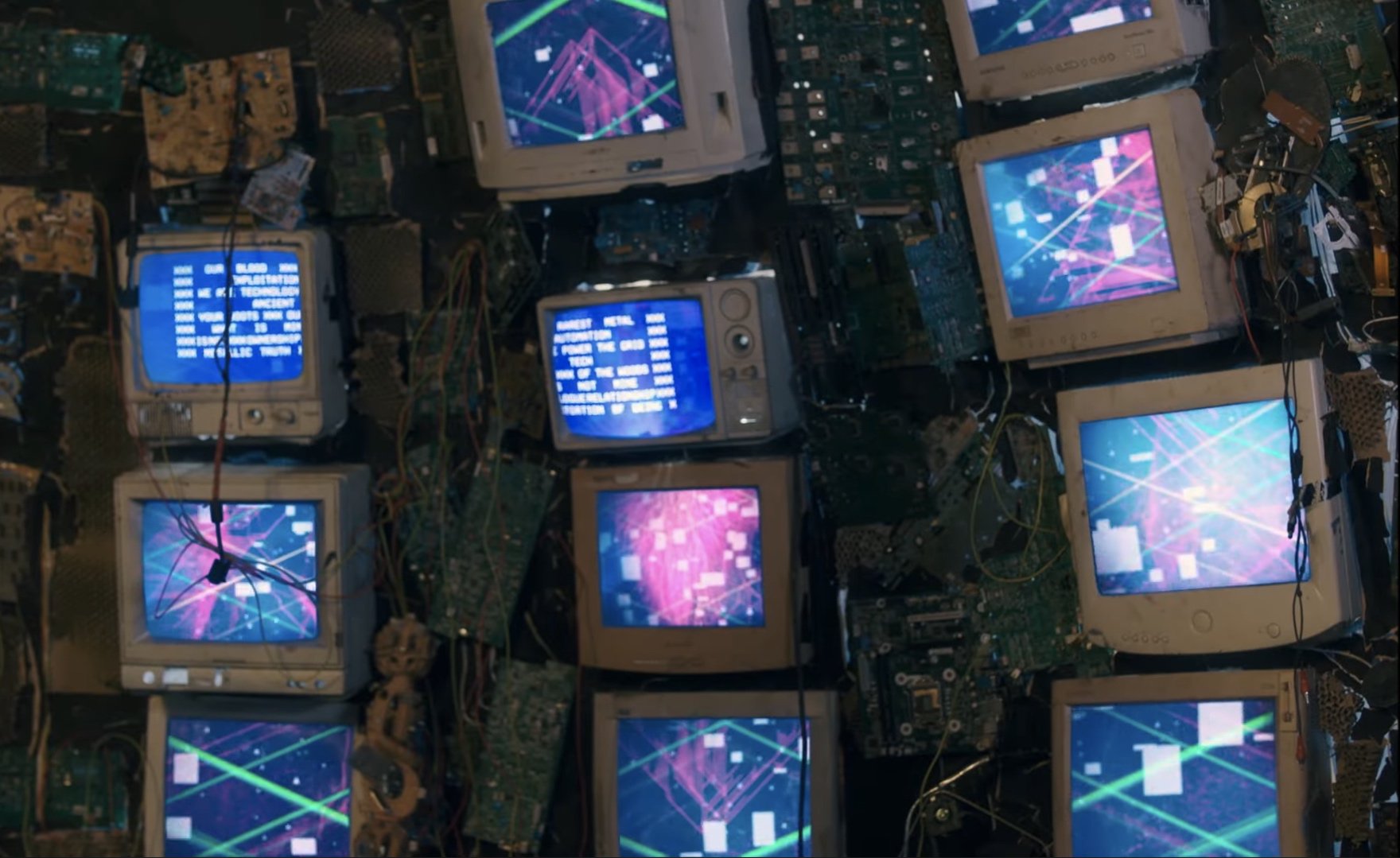
Video still 00:09, https://www.youtube.com/watch?v=acfBNIXovww
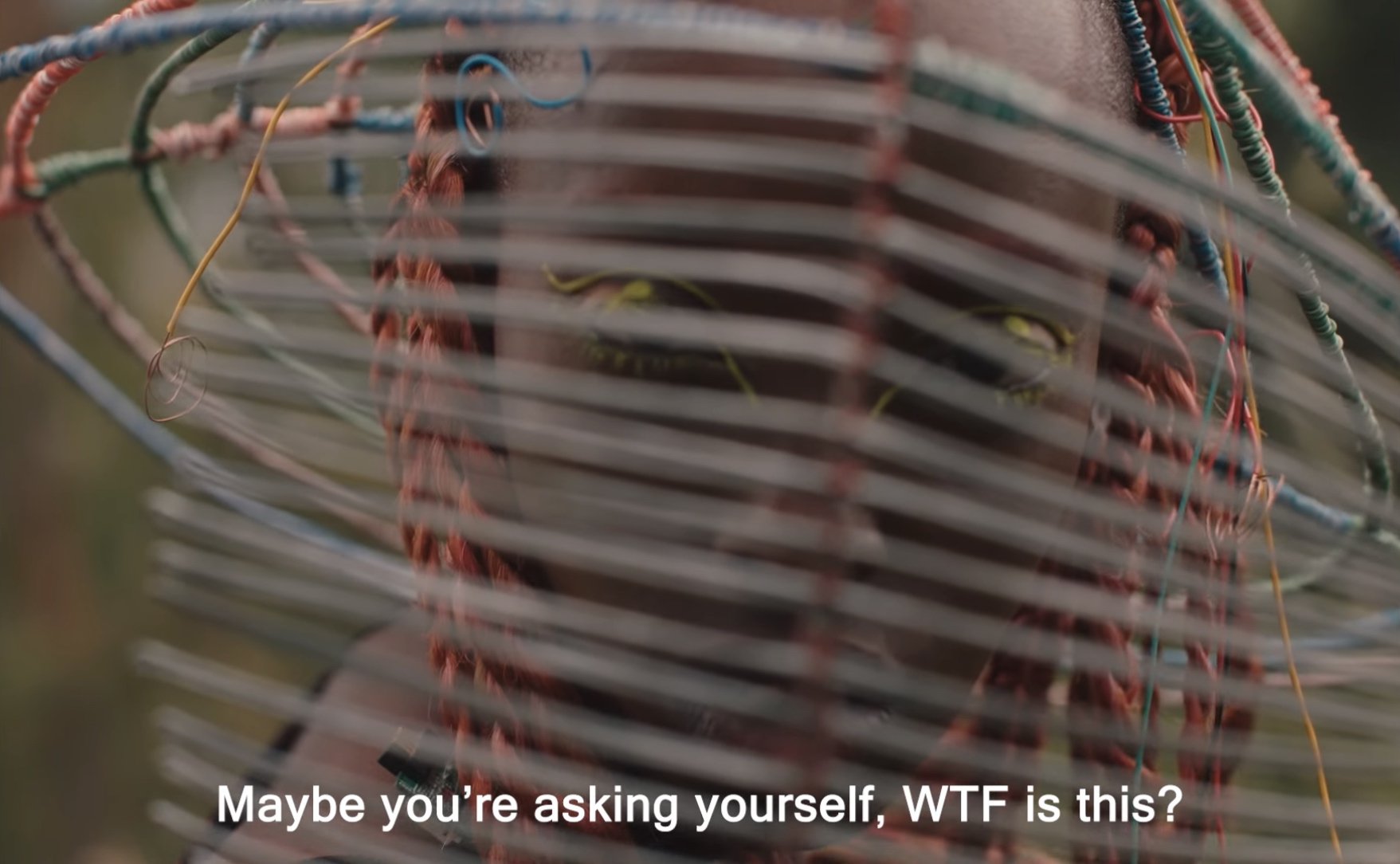
Video still 00:11, https://www.youtube.com/watch?v=acfBNIXovww
Multi-hyphenate, multidisciplinary artist Saul Williams brings his unique dynamism to this Afrofuturist vision, a sci-fi punk musical that’s a visually wondrous amalgamation of themes, ideas, and songs that Williams has explored in his work, notably his 2016 album MartyrLoserKing. Co-directed with the Rwandan-born artist and cinematographer Anisia Uzeyman, the film takes place in the hilltops of Burundi, where a group of escaped coltan miners form an anti-colonialist computer hacker collective. From their camp in an otherworldly e-waste dump, they attempt a takeover of the authoritarian regime exploiting the region's natural resources—and its people. When an intersex runaway and an escaped coltan miner find each other through cosmic forces, their connection sparks glitches within the greater divine circuitry. Set between states of being—past and present, dream and waking life, colonized and free, male and female, memory and prescience—Neptune Frost is an invigorating and empowering direct download to the cerebral cortex and a call to reclaim technology for progressive political ends.
2022, Dir. Saul Williams and Anisia Uzeyman; submitted by Tsioianiio Galban
https://linktr.ee/neptunefrost https://www.youtube.com/watch?v=acfBNIXovww
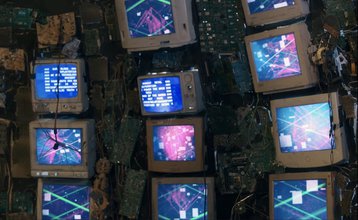
Video still 00:09, https://www.youtube.com/watch?v=acfBNIXovww

Video still 00:11, https://www.youtube.com/watch?v=acfBNIXovww
(851)
2022
Critical Coding Cookbook: Intersectional Feminist Approaches to Teaching and Learning
Xin Xin, Katherine Moriwaki
In the context of modern computer programming, the origin tale of code often begins with the Difference Engine and the Analytical Engine invented by Charles Babbage in 19th century Europe. This beginning, buoyed by the industrial revolution and militarization, fostered an embedded set of values into computation aligned with an ideology of standardization, optimization, and flawlessness. “Good” code is efficient code that operates on a scarcity mindset, limited by hardware and energy resources.
And yet, there are histories to math, engineering, and computing that are less prominently recognized because they do not neatly fit into the narratives of capitalist production. Ada Lovelace and her contribution to the development of modern computing has only recently been more broadly recognized. Textile production, which led to the invention of the Jacquard Loom, was a great inspiration to Charles Babbage’s research. Gendered and racialized preconceptions greatly impact what is validated as technical and creative work. We believe that it is time to confront how computational history has been retrofitted to tell a single narrative by recentering marginalized ways of knowing. For example, one may trace back to poe divination to gain a new perspective on the boolean variables. Quipu may be seen as one of the oldest examples of data storage. Fractals, which are often reduced to mathematical formulas in computer science classrooms can be traced back to multiple beginnings throughout ancient history such as traditional African architecture.
The Critical Coding Cookbook perceives history as a messy entanglement rather than a linear graph. There is a growing awareness towards reclaiming ancestral knowledge and a movement to decolonize computation. Through centering marginalized bodies and identities, we aim to build a collection of alternative histories, narratives, and approaches to computation. This volume of material can serve as an open-source educational resource across a spectrum of learning communities.
2022, ed. Xin Xin and Katherine Moriwaki, https://criticalcode.recipes/; submitted by Joana Chicau
Editor’s Note: The full title is ‘Critical Coding Cookbook ‧ ₊˚ * ੈ ✩ ‧ Intersectional Feminist Approaches to Teaching and Learning’ but the special characters were not added to the title due to the markdown used in the Cyberfeminism Index
In the context of modern computer programming, the origin tale of code often begins with the Difference Engine and the Analytical Engine invented by Charles Babbage in 19th century Europe. This beginning, buoyed by the industrial revolution and militarization, fostered an embedded set of values into computation aligned with an ideology of standardization, optimization, and flawlessness. “Good” code is efficient code that operates on a scarcity mindset, limited by hardware and energy resources.
And yet, there are histories to math, engineering, and computing that are less prominently recognized because they do not neatly fit into the narratives of capitalist production. Ada Lovelace and her contribution to the development of modern computing has only recently been more broadly recognized. Textile production, which led to the invention of the Jacquard Loom, was a great inspiration to Charles Babbage’s research. Gendered and racialized preconceptions greatly impact what is validated as technical and creative work. We believe that it is time to confront how computational history has been retrofitted to tell a single narrative by recentering marginalized ways of knowing. For example, one may trace back to poe divination to gain a new perspective on the boolean variables. Quipu may be seen as one of the oldest examples of data storage. Fractals, which are often reduced to mathematical formulas in computer science classrooms can be traced back to multiple beginnings throughout ancient history such as traditional African architecture.
The Critical Coding Cookbook perceives history as a messy entanglement rather than a linear graph. There is a growing awareness towards reclaiming ancestral knowledge and a movement to decolonize computation. Through centering marginalized bodies and identities, we aim to build a collection of alternative histories, narratives, and approaches to computation. This volume of material can serve as an open-source educational resource across a spectrum of learning communities.
2022, ed. Xin Xin and Katherine Moriwaki, https://criticalcode.recipes/; submitted by Joana Chicau
Editor’s Note: The full title is ‘Critical Coding Cookbook ‧ ₊˚ * ੈ ✩ ‧ Intersectional Feminist Approaches to Teaching and Learning’ but the special characters were not added to the title due to the markdown used in the Cyberfeminism Index
(852)
2022
livecoderA
What, how and who is a livecoderA?
1. A livecodera is a woman who arrived to code to use it as a weapon, a song, a dress. Looking to society, she decided to create a different possible future for it through its most potent element: culture.
2. I care about eating, doing art, fucking, sleeping and coding.
3. A livecodera, with some or a very few privileges, made a life route through patriarchal hostility. This livecodera is fully aware. Each space gained is an opportunity to subvert logic, to weave ties, to implant love.
4. A livecodera is a code worker (which is never neutral) who has to fight for her rigths on several spaces. Daily she faces different types of gender violence (symbolic, psychological, economical, physical, sexual), but she debates them in order to mend it collectively.
Qué, cómo y quién es una livecoderA?
1. Una livecodera es una mujer que ha llegado hasta el código para usarlo como un arma, como un canto, como un vestido. Mirando a la sociedad ha decidido crearle un futuro posible a través de su componente más potente: la cultura.
2. Me importa comer, hacer arte, coger, dormir y codear.
3. Una livecodera, con algunos o pocos privilegios, armó un recorrido abriéndose paso en la hostilidad de la opresión patriarcal. La livecodera es plenamente consciente. Cada espacio ganado es una oportunidad de subvertir las lógicas, de tejer lazos, de implantar amor.
4. Una livecodera es una trabajadora del código (que nunca es neutro) y por lo tanto debe pelear por sus derechos en diversos ámbitos.Por su condición de mujer, se enfrenta a diario a distintos tipos de violencias de género (simbólica, psicológica, económica, física, sexual) e intenta debatirlas, repararlas y combatirlas colectivamente.
2022, https://livecodera.glitch.me/, submitted by Joana Chicau
What, how and who is a livecoderA?
1. A livecodera is a woman who arrived to code to use it as a weapon, a song, a dress. Looking to society, she decided to create a different possible future for it through its most potent element: culture.
2. I care about eating, doing art, fucking, sleeping and coding.
3. A livecodera, with some or a very few privileges, made a life route through patriarchal hostility. This livecodera is fully aware. Each space gained is an opportunity to subvert logic, to weave ties, to implant love.
4. A livecodera is a code worker (which is never neutral) who has to fight for her rigths on several spaces. Daily she faces different types of gender violence (symbolic, psychological, economical, physical, sexual), but she debates them in order to mend it collectively.
Qué, cómo y quién es una livecoderA?
1. Una livecodera es una mujer que ha llegado hasta el código para usarlo como un arma, como un canto, como un vestido. Mirando a la sociedad ha decidido crearle un futuro posible a través de su componente más potente: la cultura.
2. Me importa comer, hacer arte, coger, dormir y codear.
3. Una livecodera, con algunos o pocos privilegios, armó un recorrido abriéndose paso en la hostilidad de la opresión patriarcal. La livecodera es plenamente consciente. Cada espacio ganado es una oportunidad de subvertir las lógicas, de tejer lazos, de implantar amor.
4. Una livecodera es una trabajadora del código (que nunca es neutro) y por lo tanto debe pelear por sus derechos en diversos ámbitos.Por su condición de mujer, se enfrenta a diario a distintos tipos de violencias de género (simbólica, psicológica, económica, física, sexual) e intenta debatirlas, repararlas y combatirlas colectivamente.
2022, https://livecodera.glitch.me/, submitted by Joana Chicau
(853)
2022
Why are Mammals called Mammals?
Komal Jain, Ritika Jathar, Akhil Patil
The project is an adaptation of the paper, “Why are Mammals called Mammals? Gender Politics in Eighteenth Century Natural History” by Dr. Londa Schiebinger. It talks about how the classification of mammals and inclusion of humans in the class is influenced by the cultural view of breasts, women and animals. As shared by Dr. Schiebinger, the term still exists Post-Darwinian Revolution.
Having not had the chance to study textbooks in school with a critical eye, reading the paper was an eye-opening experience for me. My motivation to work on the paper came from wanting to have conversations with people about how our society and science relate with each other. Collages and poetry helped in sharing complex relationships in a simple yet evocative manner. For storytelling purposes, wherever required, I have blurred spaces and time and used additional cultural references. This was the most challenging part of the project and while doing so, I have carefully tried to maintain the historical accuracy of ideas and thoughts.
2022, Graphical iteration: Komal Jain, Ritika Jathar, Akhil Patil; Research Paper: Dr. Londa Schiebinger, https://mammals.komalja.in/; submitted by Komal Jain;
https://www.jstor.org/stable/2166840

Why are Mammals called Mammals? Screenshot, 2022, Firefox v108.0.1 on Mac OS 10.15.7; https://mammals.komalja.in/
The project is an adaptation of the paper, “Why are Mammals called Mammals? Gender Politics in Eighteenth Century Natural History” by Dr. Londa Schiebinger. It talks about how the classification of mammals and inclusion of humans in the class is influenced by the cultural view of breasts, women and animals. As shared by Dr. Schiebinger, the term still exists Post-Darwinian Revolution.
Having not had the chance to study textbooks in school with a critical eye, reading the paper was an eye-opening experience for me. My motivation to work on the paper came from wanting to have conversations with people about how our society and science relate with each other. Collages and poetry helped in sharing complex relationships in a simple yet evocative manner. For storytelling purposes, wherever required, I have blurred spaces and time and used additional cultural references. This was the most challenging part of the project and while doing so, I have carefully tried to maintain the historical accuracy of ideas and thoughts.
2022, Graphical iteration: Komal Jain, Ritika Jathar, Akhil Patil; Research Paper: Dr. Londa Schiebinger, https://mammals.komalja.in/; submitted by Komal Jain;
https://www.jstor.org/stable/2166840
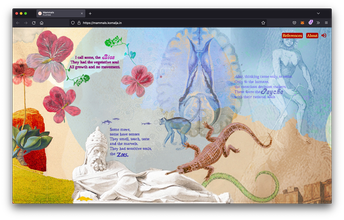
Why are Mammals called Mammals? Screenshot, 2022, Firefox v108.0.1 on Mac OS 10.15.7; https://mammals.komalja.in/
(854)
2022
Avatarization of My Self (s)
Ana Roman
-
I ACCEPT that i commit selfie when i flip my phone in direct opposition to the way the world sees my symmetry. it is in absolute opposition to the truth. or not. i have distorted myself to appease a virtual world of online brands, virtual lovers, insta-cucks, stalkers, thots, and prayers.
-
I ACCEPT THAT I COMMIT DISTORTION of the self with filters that shatter my humanity into a thousand fragmented pixelations for the world to consume. I do this. Everyday. Maintenance for maximum performance: go to the eye doctor often. every 6 months. therapy once a week. Body dysmorphia 20 + years but now at steady levels. thinner. fitter. happier. less use of filter. body dysmorphia 20 + year……ye..aaa…r..s i am.ok.
-
I ACCEPT COMPRESSION OF THE SELF for the sake of artistic capital. the 21st century terms of music capital demands that I, the artist, I the musician, I the digital creator will now live my immortality on the internet and inside virtual world. i am traced, fashionably bar-coded and lovingly packaged and compressed by .gif .wav .ai .avatar . net . dot …..dot …….. dot……..fitter.happier.
https://www.anaroman.space/datadump/avatarizationofmyself
2022, Ana Roman; https://www.anaroman.space/datadump/avatarizationofmyself; submitted by Ana Roman
-
I ACCEPT that i commit selfie when i flip my phone in direct opposition to the way the world sees my symmetry. it is in absolute opposition to the truth. or not. i have distorted myself to appease a virtual world of online brands, virtual lovers, insta-cucks, stalkers, thots, and prayers.
-
I ACCEPT THAT I COMMIT DISTORTION of the self with filters that shatter my humanity into a thousand fragmented pixelations for the world to consume. I do this. Everyday. Maintenance for maximum performance: go to the eye doctor often. every 6 months. therapy once a week. Body dysmorphia 20 + years but now at steady levels. thinner. fitter. happier. less use of filter. body dysmorphia 20 + year……ye..aaa…r..s i am.ok.
-
I ACCEPT COMPRESSION OF THE SELF for the sake of artistic capital. the 21st century terms of music capital demands that I, the artist, I the musician, I the digital creator will now live my immortality on the internet and inside virtual world. i am traced, fashionably bar-coded and lovingly packaged and compressed by .gif .wav .ai .avatar . net . dot …..dot …….. dot……..fitter.happier.
https://www.anaroman.space/datadump/avatarizationofmyself
2022, Ana Roman; https://www.anaroman.space/datadump/avatarizationofmyself; submitted by Ana Roman
(855)
2022
The Most Radical Philosopher: Putting the Cyber back in Sadie Plant’s cyberfeminism
Vincent Lê
This article provides a critical introduction to or close reading of British philosopher Sadie Plant’s original formulation of cyberfeminism. (x) I begin by showing how Plant’s earliest work seeks a form of critique—or what she also calls ‘the most radical gesture’—that could never be recuperated by the power structures it seeks to contest as has happened to so much critical thought before. I then argue that her cyberfeminist turn is motivated by the discovery that evermore autonomous machines are carving out a space outside the human spectacle from whence our anthropocentric misconceptions can be eliminated. If Plant characterizes this machinic critique as a feminism, it is because she sees increasingly intelligent machines as harbouring the same attributes often associated with women inasmuch as they have both been traditionally treated as a means to the ends of man without any rational agency, fixed identity or humanity of their own. As we shall see, Plant’s cyberfeminism is not so much about emancipating women as it is about emancipating feminine structures like irrationality, fluid identity, general intelligence, and even inhumanity, which she finds incarnated in emerging technologies as they spiral outside of man’s control in a purely formal feminism, or even a feminism without women.
2022, Vincent Lê, Cosmos and History: The Journal of Natural and Social Philosophy, vol. 18, no. 2; submitted by Vincent Lê
https://www.are.na/block/22588854 https://www.academia.edu/93892703/The_Most_Radical_Philosopher_Putting_the_Cyber_Back_in_Sadie_Plants_Cyberfeminism
This article provides a critical introduction to or close reading of British philosopher Sadie Plant’s original formulation of cyberfeminism. (x) I begin by showing how Plant’s earliest work seeks a form of critique—or what she also calls ‘the most radical gesture’—that could never be recuperated by the power structures it seeks to contest as has happened to so much critical thought before. I then argue that her cyberfeminist turn is motivated by the discovery that evermore autonomous machines are carving out a space outside the human spectacle from whence our anthropocentric misconceptions can be eliminated. If Plant characterizes this machinic critique as a feminism, it is because she sees increasingly intelligent machines as harbouring the same attributes often associated with women inasmuch as they have both been traditionally treated as a means to the ends of man without any rational agency, fixed identity or humanity of their own. As we shall see, Plant’s cyberfeminism is not so much about emancipating women as it is about emancipating feminine structures like irrationality, fluid identity, general intelligence, and even inhumanity, which she finds incarnated in emerging technologies as they spiral outside of man’s control in a purely formal feminism, or even a feminism without women.
2022, Vincent Lê, Cosmos and History: The Journal of Natural and Social Philosophy, vol. 18, no. 2; submitted by Vincent Lê
https://www.are.na/block/22588854 https://www.academia.edu/93892703/The_Most_Radical_Philosopher_Putting_the_Cyber_Back_in_Sadie_Plants_Cyberfeminism
(856)
2022
I’m like a pdf but a girl: Girlblogging as a nomadic pedagogy
Ester Freider
Call it what you want: immanence, subjectivity, self-indulgence. I’m a 21st century American; I can’t get out of myself. What is exterior to me and pulls me to it is just funhouse mirrors for what I already have, or think that I have. I can’t tell if this is an ancient thing for which art was made for—the recognition of the self in the other—or the consumerist desire to bathe oneself in the protective balm of niche-ly commodifiable symbols until one loses their base humanity. Maybe both. But, luckily for me, I’m also (if it’s not clear already) a drama queen. And drama queens are blessed and cursed with the delectable ability to connect their banalities with Tragic themes like universal love, righteous crimes, and forests of magic. They are the ideal storytellers. This is an ethnographical report about the dissemination of information on a digital platform. It is also a story about the desire to find ourselves in others’ words, and the power of those words to create identity with their spread.
*Editor’s Note: The final page of Freider’s dissertation reads: “Please distribute and quote the content of this piece freely. However, I would appreciate my name, Ester Freider, being acknowledged for direct quotations of my writing, as well as terms such as ‘girlblogging’, ‘wetness’, and ‘pirate feminism’, that I created or repurposed through my theorization.” *
2022, Ester Freider, B.A. Arts Criticism dissertation, Central Saint Martins, excerpt from p.6, “Introduction: The Beauty of the Baud”; submitted by Ester Freider
https://www.are.na/block/20684314 https://www.are.na/ester-freider/i-m-like-a-pdf-but-a-girl

p.5, “Tumblr post by @thefig from where my title originates.” https://www.are.na/block/20684314
Call it what you want: immanence, subjectivity, self-indulgence. I’m a 21st century American; I can’t get out of myself. What is exterior to me and pulls me to it is just funhouse mirrors for what I already have, or think that I have. I can’t tell if this is an ancient thing for which art was made for—the recognition of the self in the other—or the consumerist desire to bathe oneself in the protective balm of niche-ly commodifiable symbols until one loses their base humanity. Maybe both. But, luckily for me, I’m also (if it’s not clear already) a drama queen. And drama queens are blessed and cursed with the delectable ability to connect their banalities with Tragic themes like universal love, righteous crimes, and forests of magic. They are the ideal storytellers. This is an ethnographical report about the dissemination of information on a digital platform. It is also a story about the desire to find ourselves in others’ words, and the power of those words to create identity with their spread.
*Editor’s Note: The final page of Freider’s dissertation reads: “Please distribute and quote the content of this piece freely. However, I would appreciate my name, Ester Freider, being acknowledged for direct quotations of my writing, as well as terms such as ‘girlblogging’, ‘wetness’, and ‘pirate feminism’, that I created or repurposed through my theorization.” *
2022, Ester Freider, B.A. Arts Criticism dissertation, Central Saint Martins, excerpt from p.6, “Introduction: The Beauty of the Baud”; submitted by Ester Freider
https://www.are.na/block/20684314 https://www.are.na/ester-freider/i-m-like-a-pdf-but-a-girl

p.5, “Tumblr post by @thefig from where my title originates.” https://www.are.na/block/20684314
(857)
2022
Cyberfeminist Timelords
V Barratt
We hyphenate and hyphenate doubly, one dash running into another, the perforation becoming a new edge. We shimmer on this edge.
We instantiate our constructs with posts—but the centre cannot hold
and as in a dream, the world
heaves.
The abnormal clicking goes on,
beating out the dark, cosmic rhythm which underlies all mystical
gate-openings.
Cyberfeminism never happened…
its time has never come.
Cyberfeminism hints at itself in an impossible present that never materializes, a present that subdivides infinitely, the instant never fully forming.
2022, V Barratt, Runway Journal (x) Issue 46: Ghost, https://runway.org.au/public_html/wp-content/uploads/2022/12/Cyberfeminist%20Timelords_VBarratt.pdf
https://runway.org.au/v-barratt/
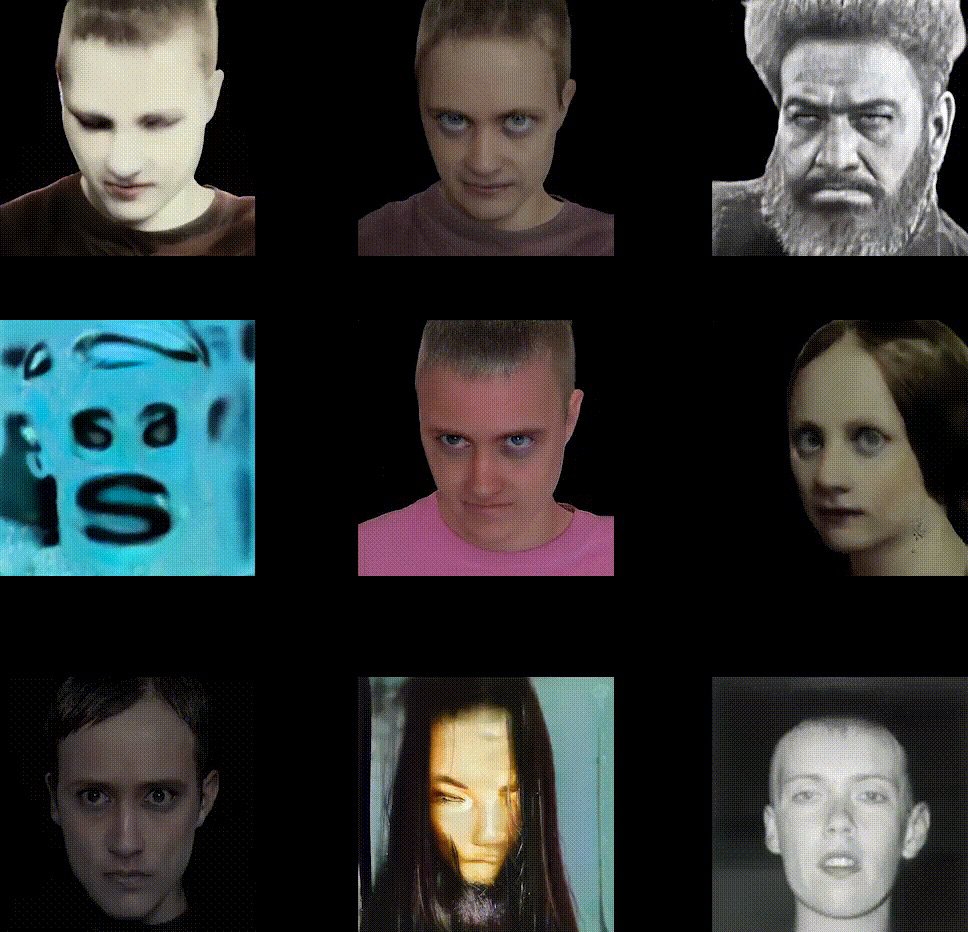
still of MORPHS AGHAST featuring: Ada Lovelace, Sadie Plant, VNS Matrix, Amy Ireland, DNA Sluts, Circuit Boy, Big Daddy Mainframe , The Alpha Bar Silicon Angels, Cyberfeminist Manifesto for the 21st Century, Arthur Conan Doyle as Professor Challenger, Mycoslime; video from https://runway.org.au/v-barratt/
We hyphenate and hyphenate doubly, one dash running into another, the perforation becoming a new edge. We shimmer on this edge.
We instantiate our constructs with posts—but the centre cannot hold
and as in a dream, the world
heaves.
The abnormal clicking goes on,
beating out the dark, cosmic rhythm which underlies all mystical
gate-openings.
Cyberfeminism never happened…
its time has never come.
Cyberfeminism hints at itself in an impossible present that never materializes, a present that subdivides infinitely, the instant never fully forming.
2022, V Barratt, Runway Journal (x) Issue 46: Ghost, https://runway.org.au/public_html/wp-content/uploads/2022/12/Cyberfeminist%20Timelords_VBarratt.pdf
https://runway.org.au/v-barratt/

still of MORPHS AGHAST featuring: Ada Lovelace, Sadie Plant, VNS Matrix, Amy Ireland, DNA Sluts, Circuit Boy, Big Daddy Mainframe , The Alpha Bar Silicon Angels, Cyberfeminist Manifesto for the 21st Century, Arthur Conan Doyle as Professor Challenger, Mycoslime; video from https://runway.org.au/v-barratt/
(858)
2022
The Encyclopaedia of Female Archetypes
Tasha Dezelsky
In Celtic mythology, it is believed that women are classified under four main categories: The Mother, The Maiden, The Crone, and The Wild Woman. Although not as explicit, other cultures and religions have shared the same philosophy, their female divinities and folkloric characters belonging to one of these four archetypal bases. This categorization has continued to exist and develop, and is now reflected in female figures in modern/contemporary film, TV, literature, and general pop culture; however, they have become increasingly nuanced and even subversive due to the change in how women have been treated in societies over time. The archaic and modern are therefore analogous, as one serves as a foundation for the other; however, they are simultaneously disparate due to the different time periods and the changes in societal attitudes concerning women.
The Encyclopaedia of Female Archetypes, through exploring the evolution of fictional female figures from the past to the present, aims to showcase the wider picture of how societies may separate real women into reductive archetypal concepts by generalizing them from their particular characteristics. This is explored in the project by playing with layering, overprinting, and transparency in both print and web mediums. The ‘past’ is categorized as cyan, the ‘future’ (or current times) as magenta, and pictures/text are laid over one another to reflect how ancient female archetypes are the foundational bedrock from which current female characters have developed, while also exhibiting how much the current characters have evolved and even subverted their archaic roots.
2022–2023, Tasha Dezelsky, https://tashadezelsky.github.io/thesis/; submitted by Tasha Dezelsky

“The Good Wife”, image from https://tashadezelsky.github.io/thesis/
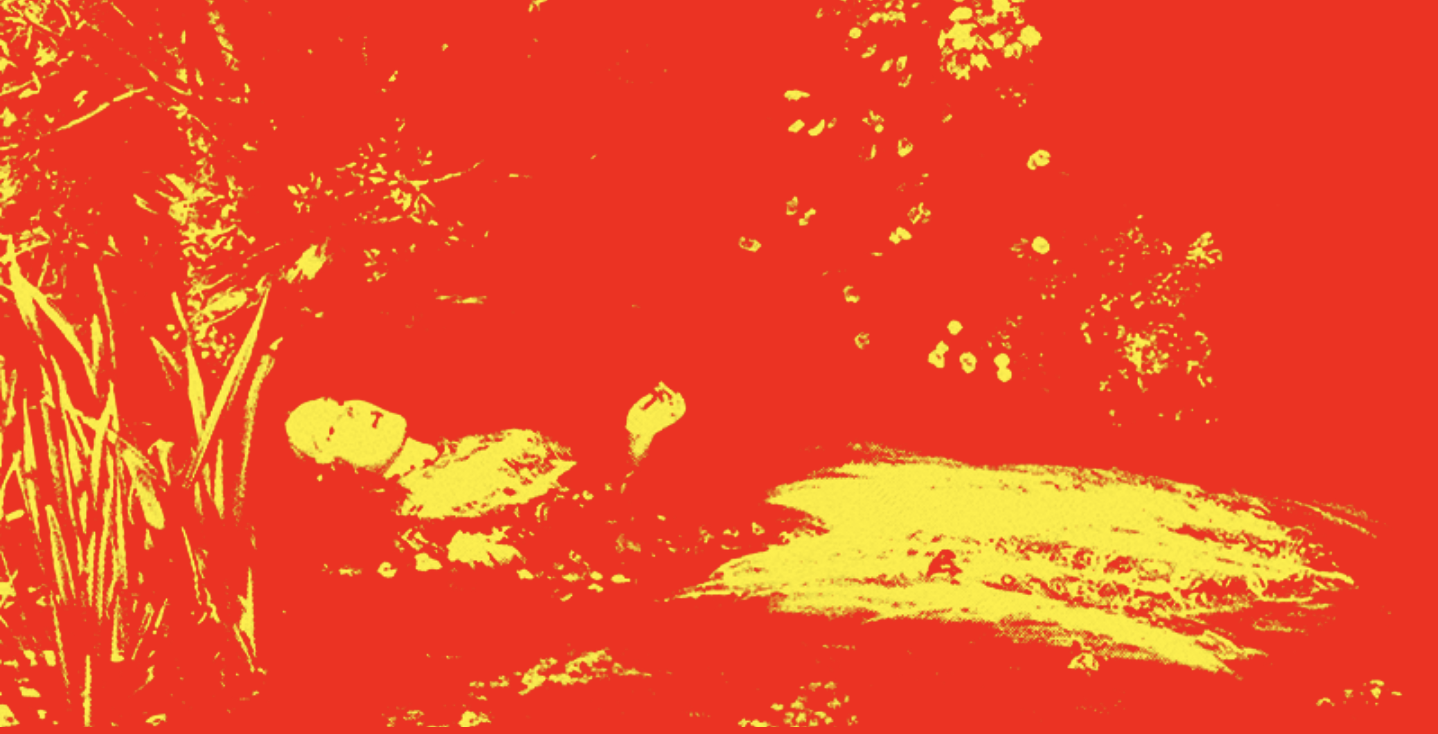
“The Artist”, image from https://tashadezelsky.github.io/thesis/
In Celtic mythology, it is believed that women are classified under four main categories: The Mother, The Maiden, The Crone, and The Wild Woman. Although not as explicit, other cultures and religions have shared the same philosophy, their female divinities and folkloric characters belonging to one of these four archetypal bases. This categorization has continued to exist and develop, and is now reflected in female figures in modern/contemporary film, TV, literature, and general pop culture; however, they have become increasingly nuanced and even subversive due to the change in how women have been treated in societies over time. The archaic and modern are therefore analogous, as one serves as a foundation for the other; however, they are simultaneously disparate due to the different time periods and the changes in societal attitudes concerning women.
The Encyclopaedia of Female Archetypes, through exploring the evolution of fictional female figures from the past to the present, aims to showcase the wider picture of how societies may separate real women into reductive archetypal concepts by generalizing them from their particular characteristics. This is explored in the project by playing with layering, overprinting, and transparency in both print and web mediums. The ‘past’ is categorized as cyan, the ‘future’ (or current times) as magenta, and pictures/text are laid over one another to reflect how ancient female archetypes are the foundational bedrock from which current female characters have developed, while also exhibiting how much the current characters have evolved and even subverted their archaic roots.
2022–2023, Tasha Dezelsky, https://tashadezelsky.github.io/thesis/; submitted by Tasha Dezelsky

“The Good Wife”, image from https://tashadezelsky.github.io/thesis/

“The Artist”, image from https://tashadezelsky.github.io/thesis/
(859)
2023
Cybercultures and Cyberfeminisms
Jeannine Tang, Irina Aristarkhova, Maria Fernández, Mindy Seu, Margaret Tan
This program [SWEET PEA: YOUR OTHER PROGENY series] brings together artists, curators, and writers in the U.S. and Asia who were involved in cyberfeminist conversations on and offline during the early 2000’s, including artists exhibiting in feminist contexts, moderators of feminist discussion lists and organizers of cyberarts labs. In addition to parsing feminist interventions into cyberculture—including postcolonial critiques of virtuality and biotech, the material life of the internet and questions of reproduction and labor—the panel will also reflect on historical returns to and reconstructions of these contexts today. Speakers include Irina Aristarkhova, Maria Fernández, Mindy Seu, and Margaret Tan.
Editor’s Note: This program is curated by Jeannine Tang as part of the Singapore Biennale 2022 named Natasha, organized by the Singapore Art Museum, with support from SAM Residencies. Co-presented with the Vera List Center for Art and Politics at The New School, New York.
2023, Jeannine Tang, Irina Aristarkhova, Maria Fernández, Mindy Seu, Margaret Tan; Vera List Center for Art & Politics, https://www.veralistcenter.org/events/sweet-pea-your-other-progeny-cybercultures-and-cyberfeminisms
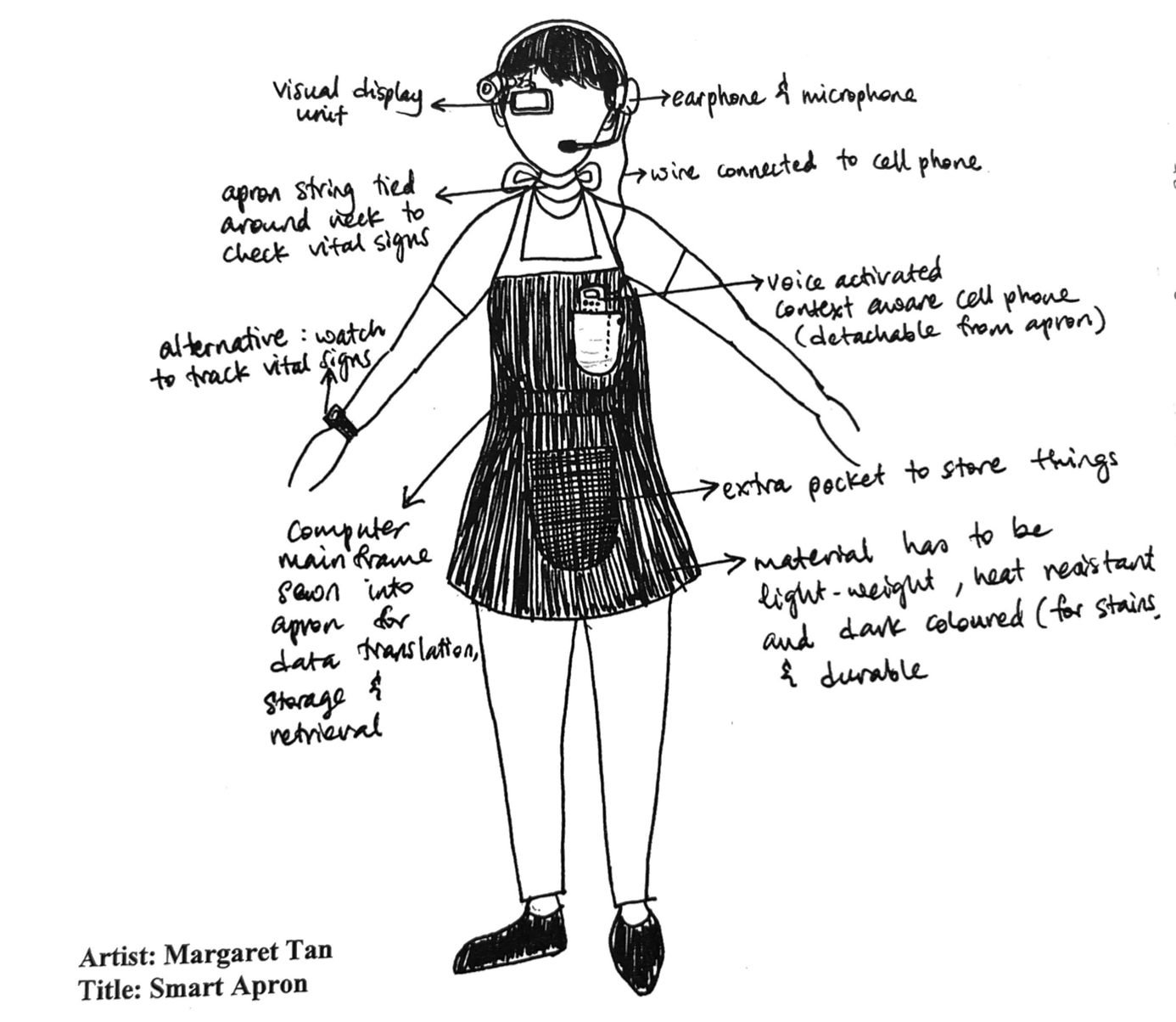
Margaret Tan, Smart Apron, 2003. Courtesy of the artist.
This program [SWEET PEA: YOUR OTHER PROGENY series] brings together artists, curators, and writers in the U.S. and Asia who were involved in cyberfeminist conversations on and offline during the early 2000’s, including artists exhibiting in feminist contexts, moderators of feminist discussion lists and organizers of cyberarts labs. In addition to parsing feminist interventions into cyberculture—including postcolonial critiques of virtuality and biotech, the material life of the internet and questions of reproduction and labor—the panel will also reflect on historical returns to and reconstructions of these contexts today. Speakers include Irina Aristarkhova, Maria Fernández, Mindy Seu, and Margaret Tan.
Editor’s Note: This program is curated by Jeannine Tang as part of the Singapore Biennale 2022 named Natasha, organized by the Singapore Art Museum, with support from SAM Residencies. Co-presented with the Vera List Center for Art and Politics at The New School, New York.
2023, Jeannine Tang, Irina Aristarkhova, Maria Fernández, Mindy Seu, Margaret Tan; Vera List Center for Art & Politics, https://www.veralistcenter.org/events/sweet-pea-your-other-progeny-cybercultures-and-cyberfeminisms

Margaret Tan, Smart Apron, 2003. Courtesy of the artist.
(860)
2023
MsGlitch403
Irayna Lin, Susan Chen, Lydia Pochueva, Joey Ye, Jingtian Zong
MsGlitch403 is a collective initiated by four UCSC SIP interns in the summer of 2023, exploring the relationship between gender, sexuality, and representation in cyberspace. MsGlitch403 represents a multitude of ideas: Starting at its core, we take inspiration from ‘glitch,’ first coined in Glitch Feminism (x) by Legacy Russell, representing our divergence from the heteronormative digital sphere. Repurposing the ‘403’ from ‘403 Forbidden Error,’ a status code indicating the server understands the request but refuses to authorize it, we seek empowerment from becoming internet reformers who defy online restrictions. Lastly, by adopting ‘Ms,’ a title that emerged from the second-wave feminist movement, connoting women’s independence, we aim to create a feminine cyber persona applicable to anyone willing to transcend beyond the limitations of their physical bodies into the web.
2023, Irayna Lin, Susan Chen, Lydia Pochueva, Joey Ye, Jingtian Zong, https://403msglitch.me, excerpt from https://403msglitch.me/Info; submitted by Jingtian Zong
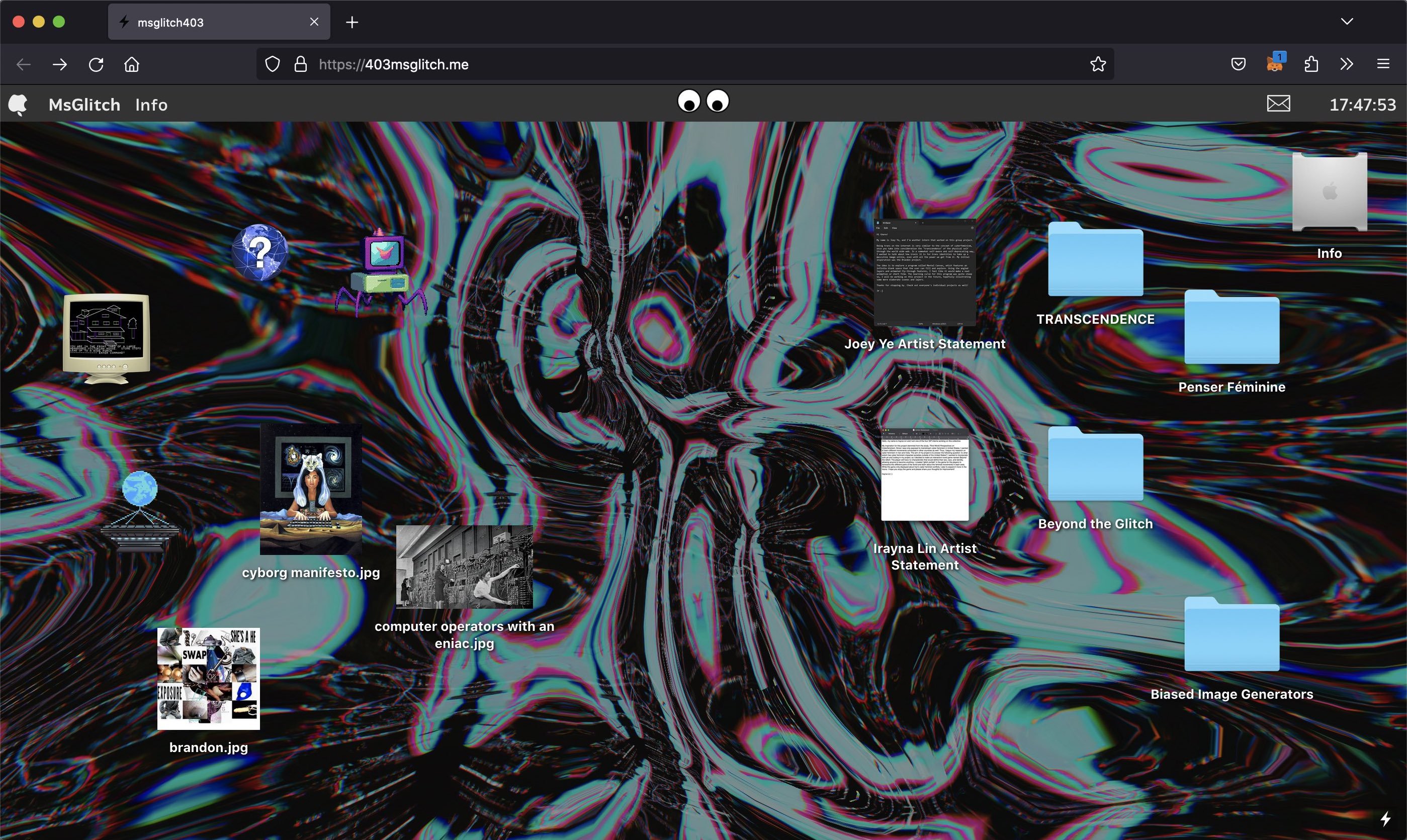
MsGlitch403, screenshot, 2024, Firefox v121.0 on Mac OS 10.15.7; https://403msglitch.me
MsGlitch403 is a collective initiated by four UCSC SIP interns in the summer of 2023, exploring the relationship between gender, sexuality, and representation in cyberspace. MsGlitch403 represents a multitude of ideas: Starting at its core, we take inspiration from ‘glitch,’ first coined in Glitch Feminism (x) by Legacy Russell, representing our divergence from the heteronormative digital sphere. Repurposing the ‘403’ from ‘403 Forbidden Error,’ a status code indicating the server understands the request but refuses to authorize it, we seek empowerment from becoming internet reformers who defy online restrictions. Lastly, by adopting ‘Ms,’ a title that emerged from the second-wave feminist movement, connoting women’s independence, we aim to create a feminine cyber persona applicable to anyone willing to transcend beyond the limitations of their physical bodies into the web.
2023, Irayna Lin, Susan Chen, Lydia Pochueva, Joey Ye, Jingtian Zong, https://403msglitch.me, excerpt from https://403msglitch.me/Info; submitted by Jingtian Zong

MsGlitch403, screenshot, 2024, Firefox v121.0 on Mac OS 10.15.7; https://403msglitch.me


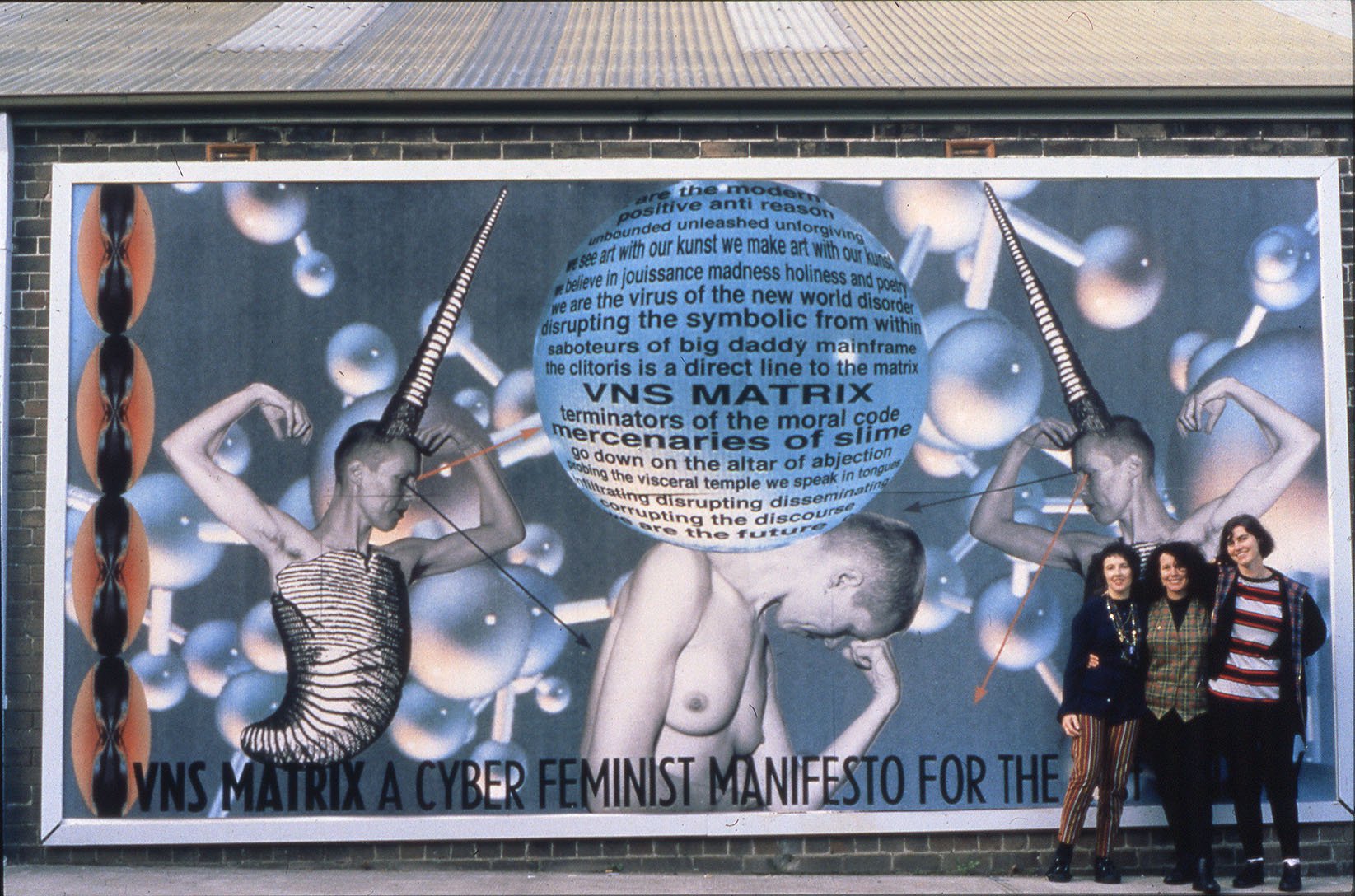

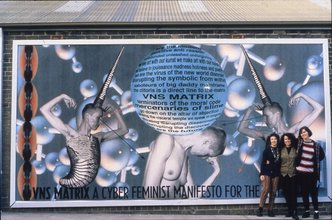
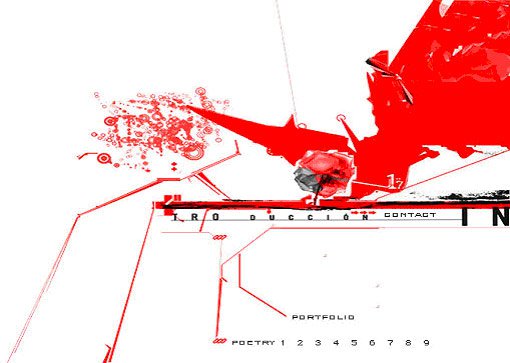
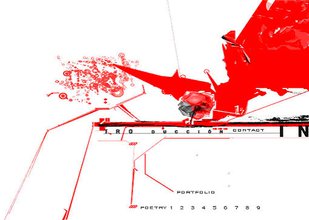



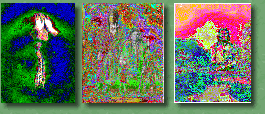

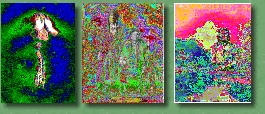

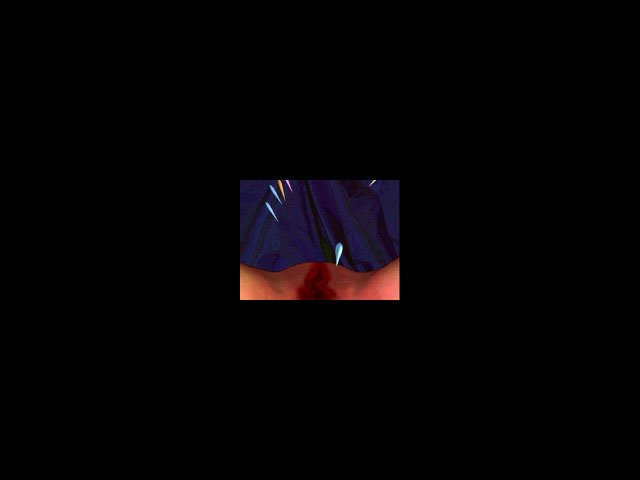


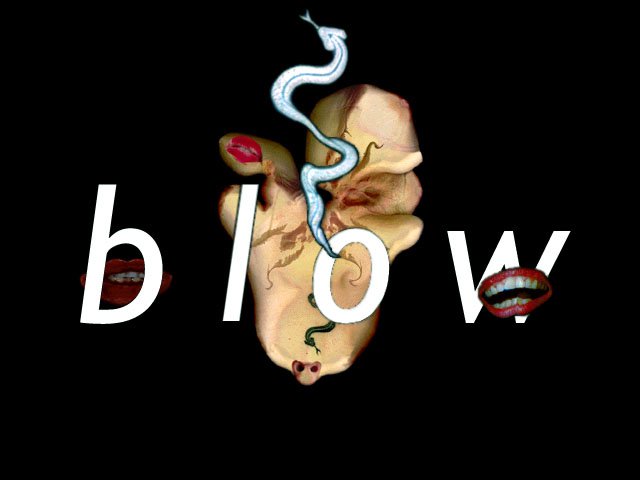
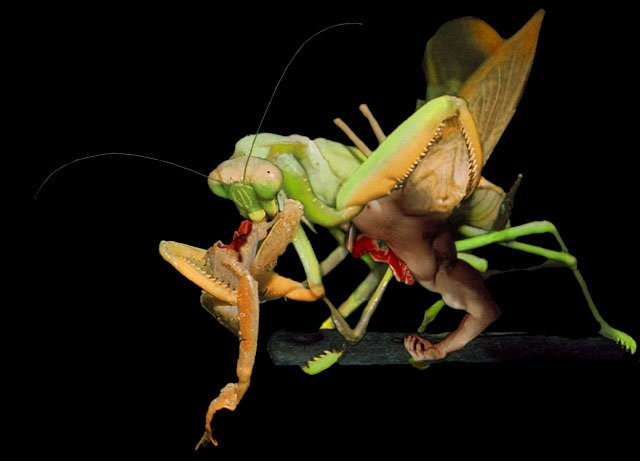

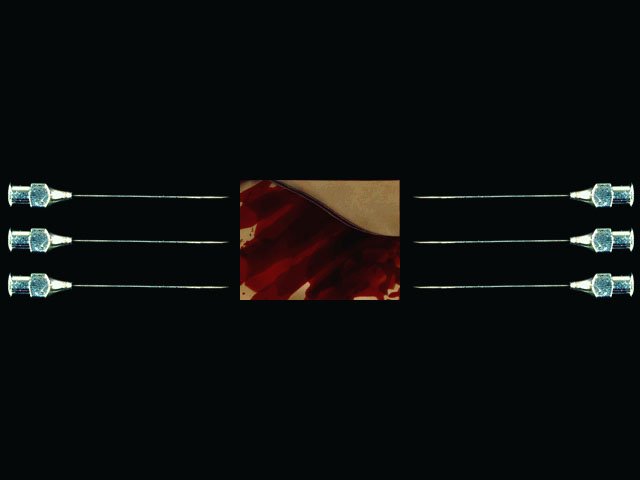
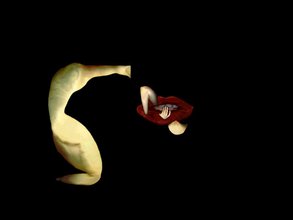
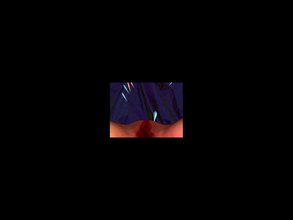



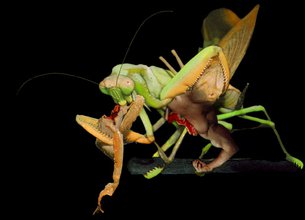

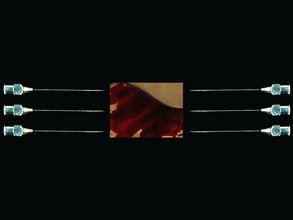






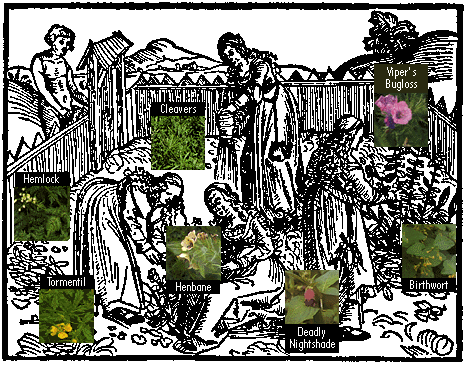


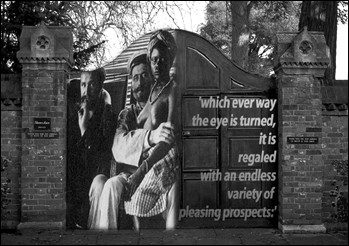
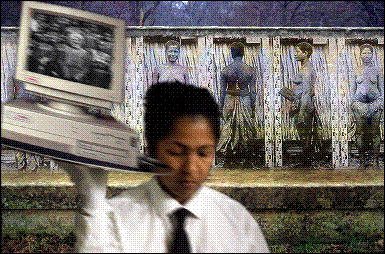

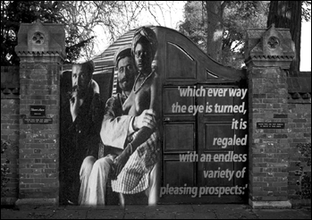
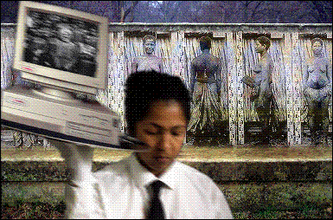

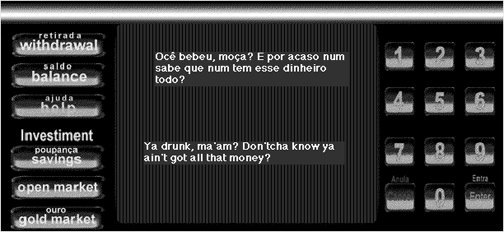
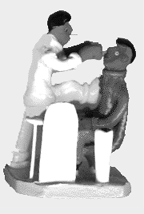


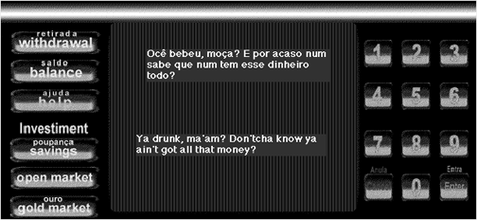
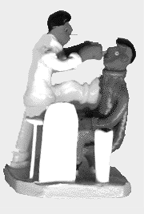














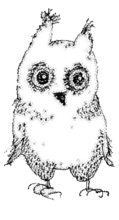
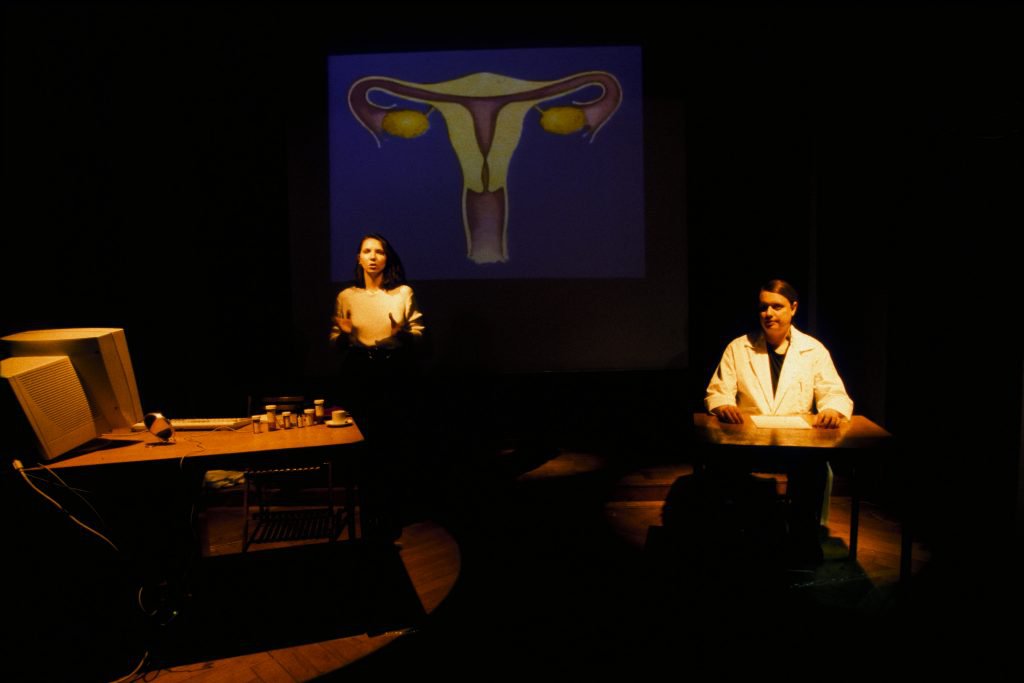
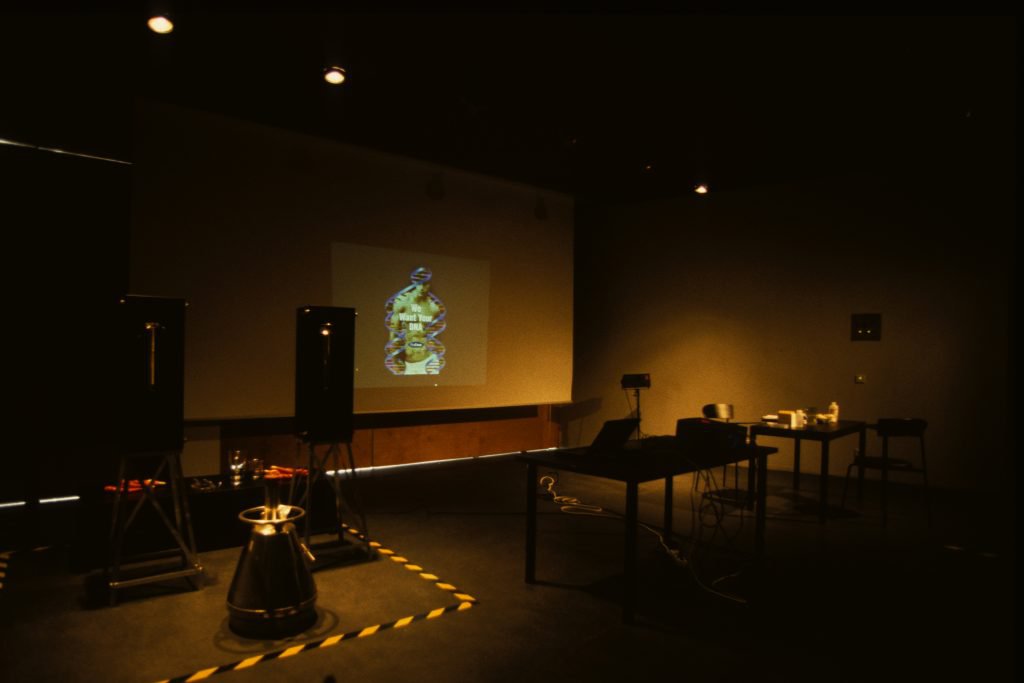
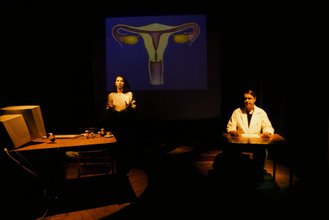
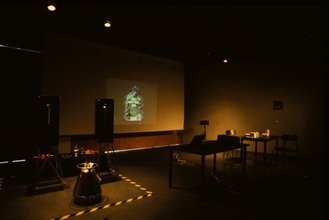
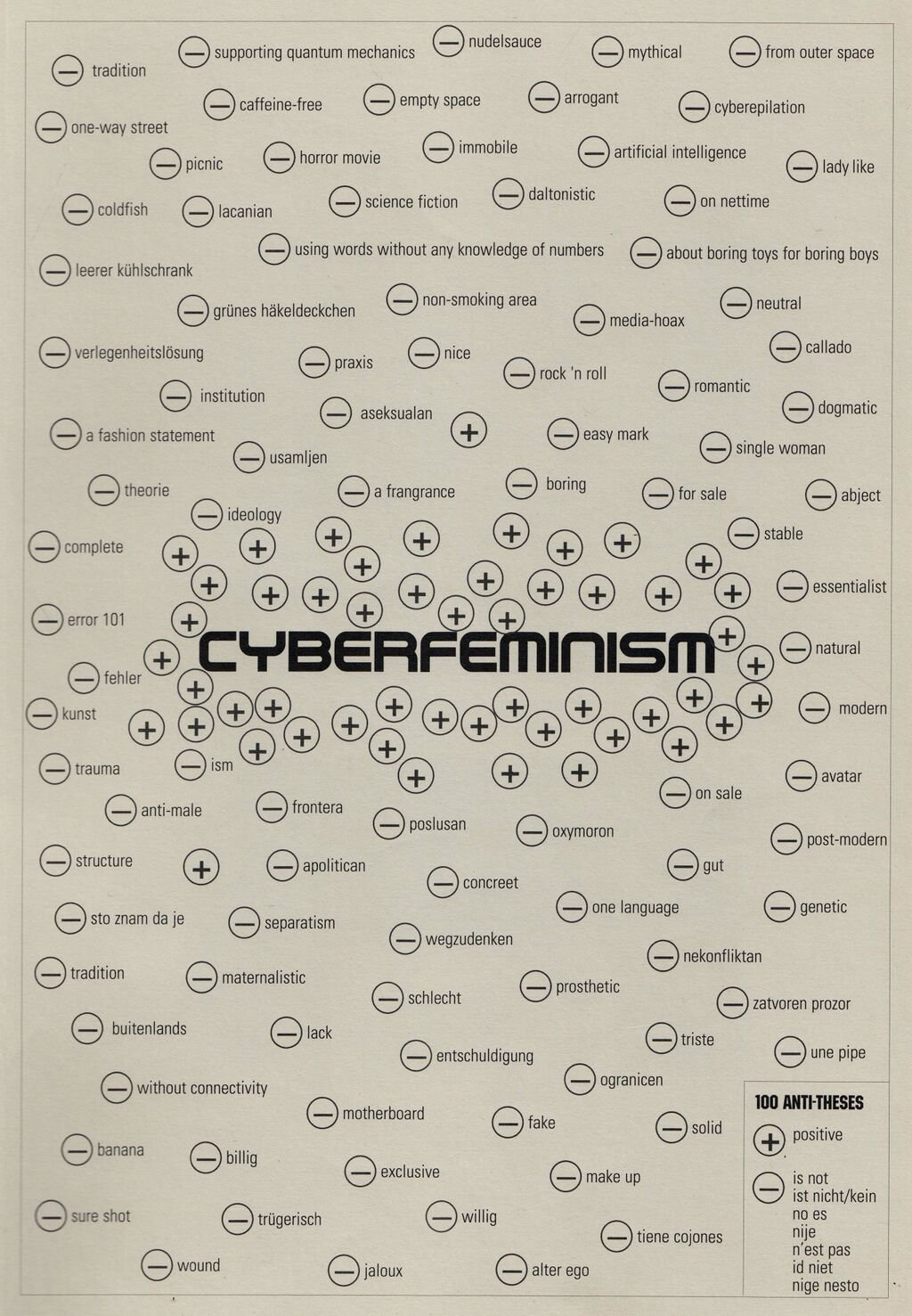
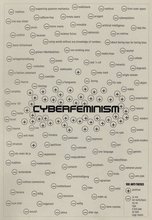
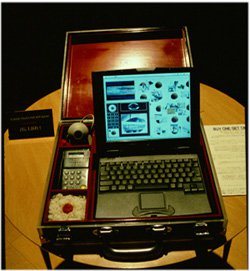

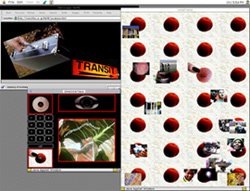
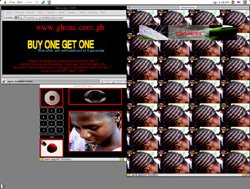
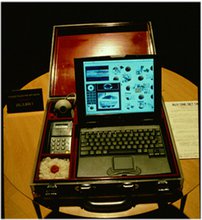

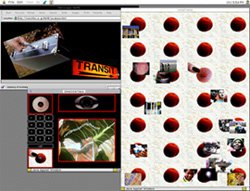





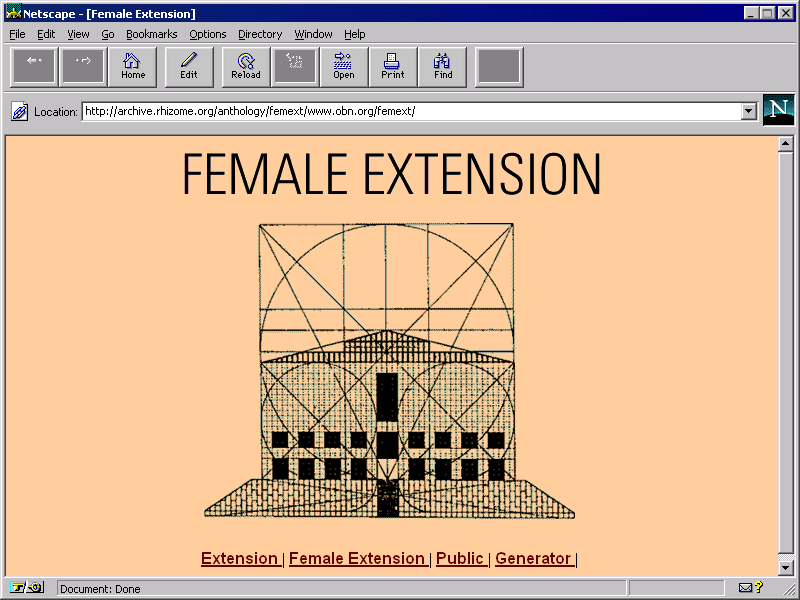
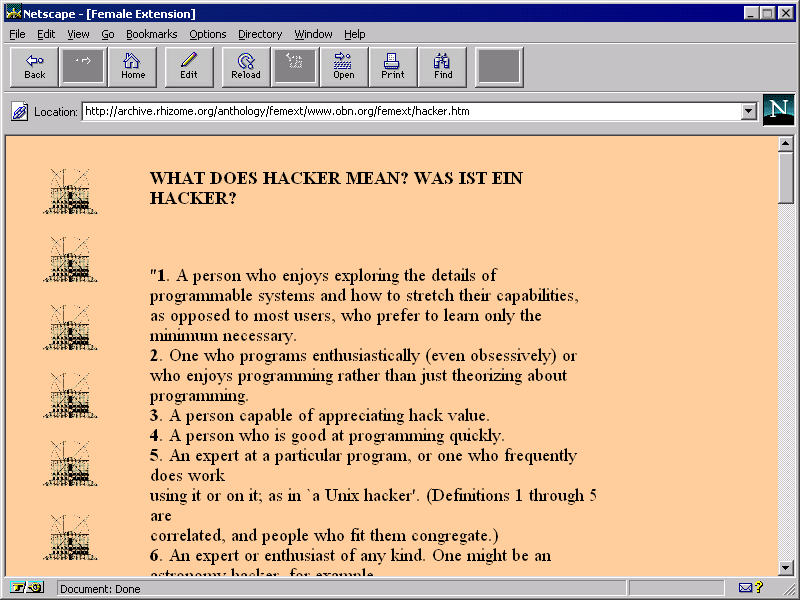
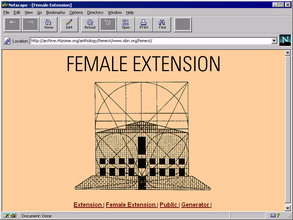
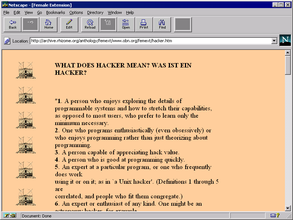

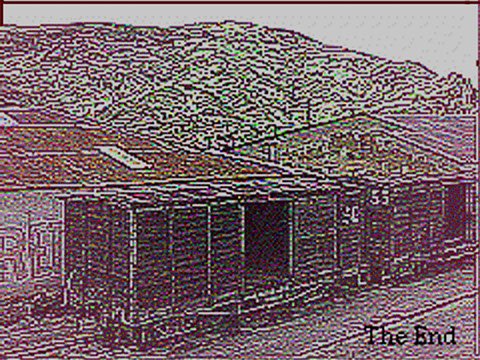
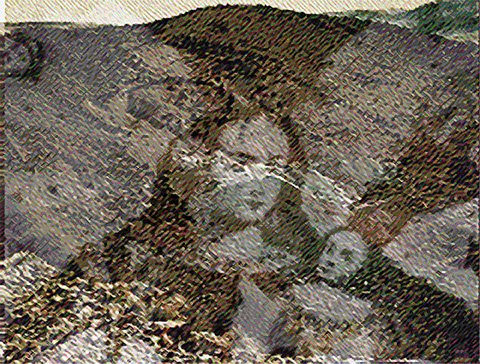
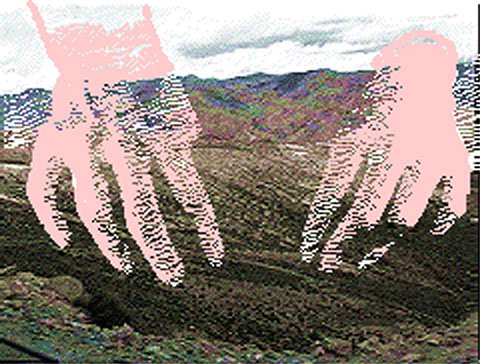
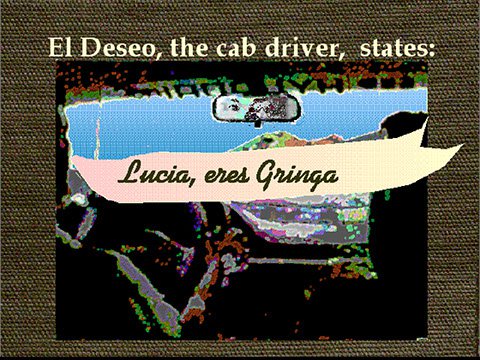

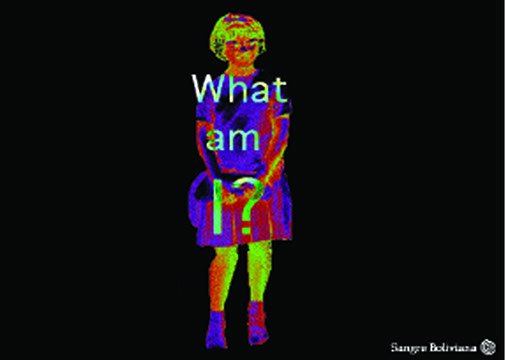

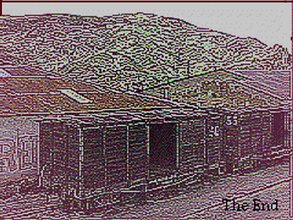
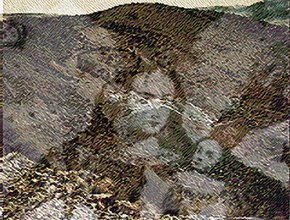
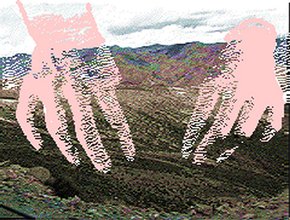
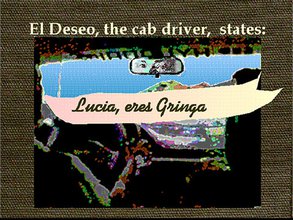

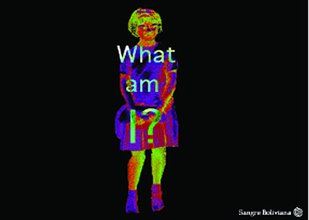


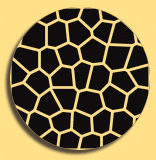
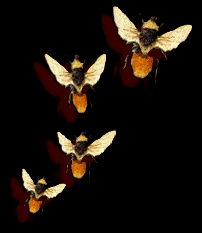





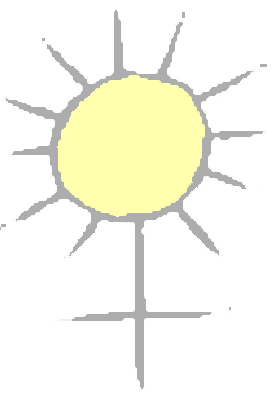
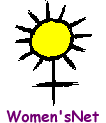

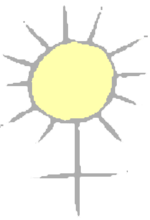

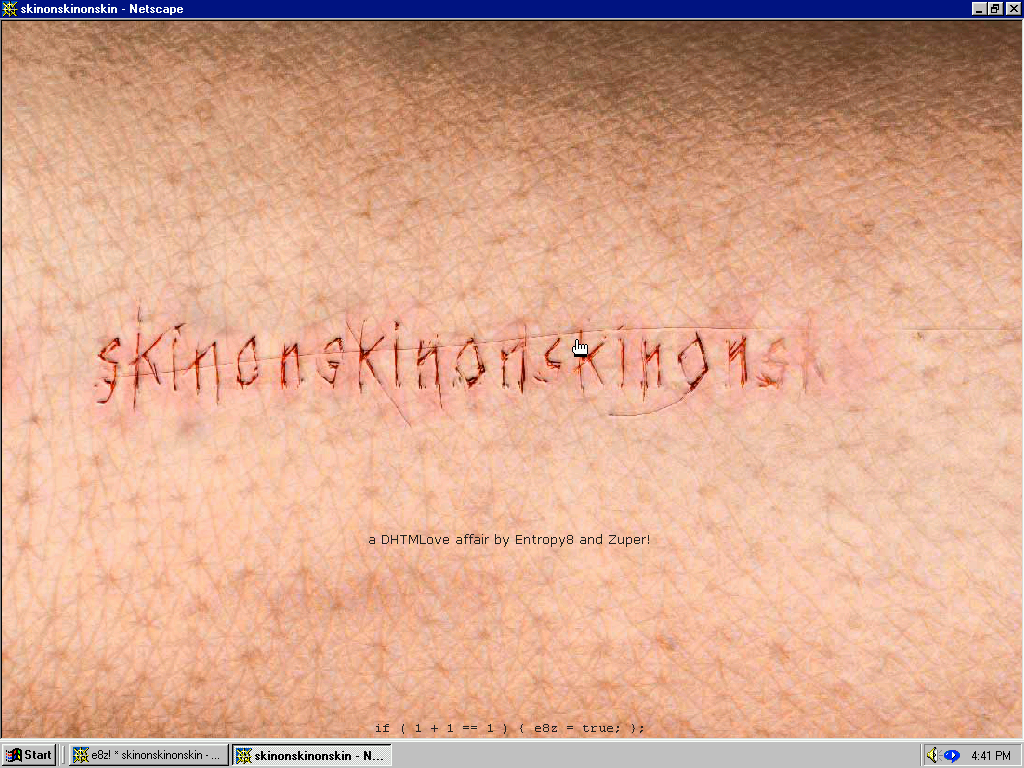



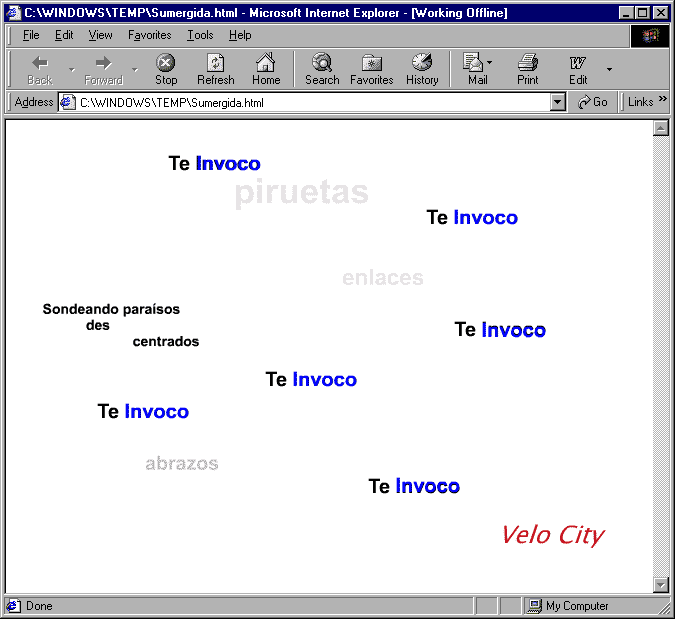
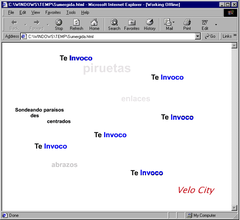



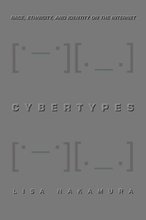







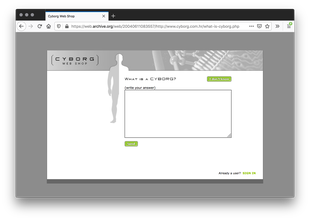



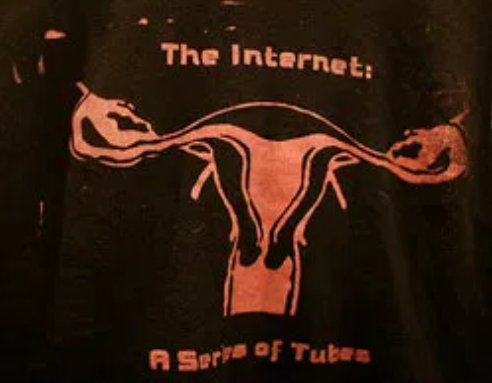
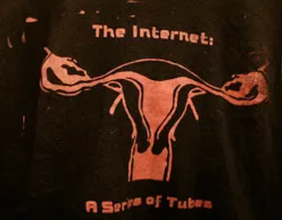
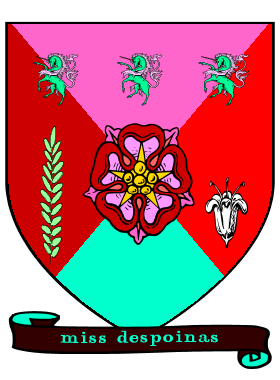
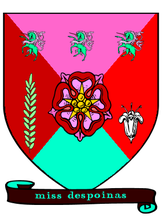
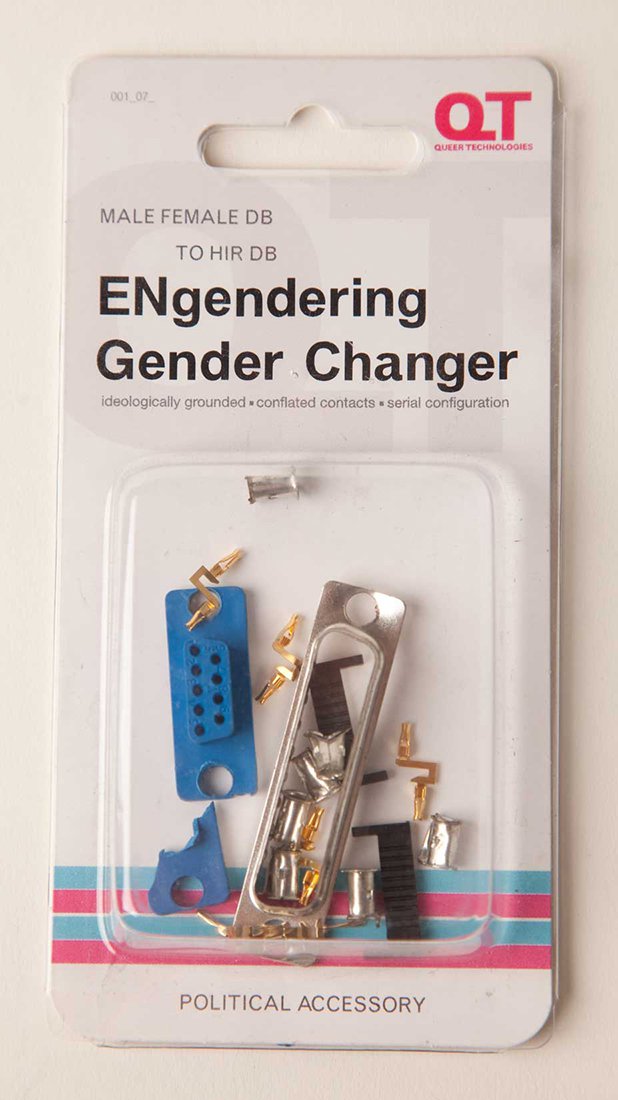
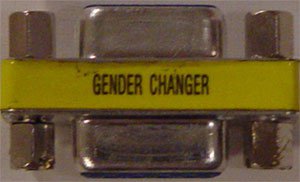
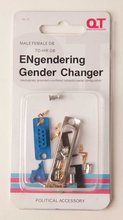
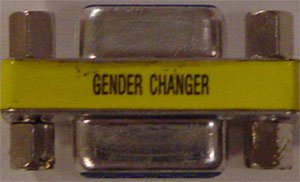
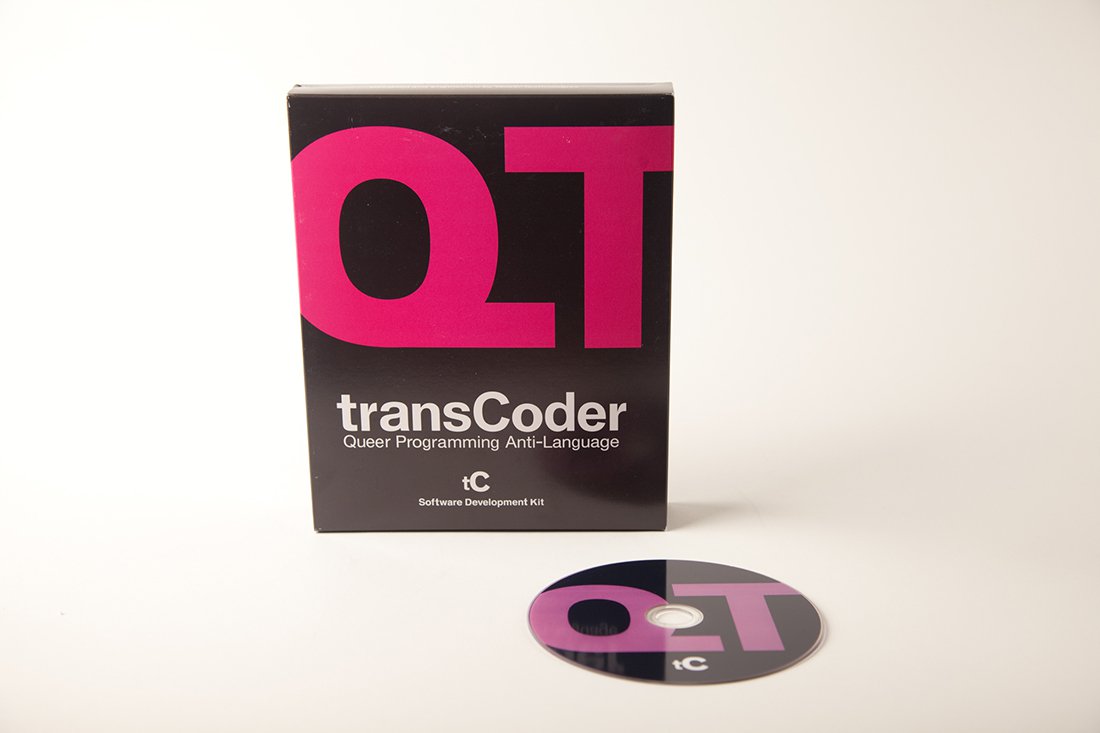
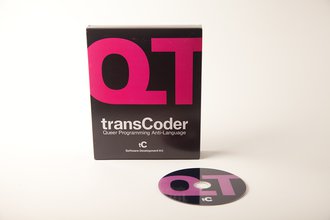


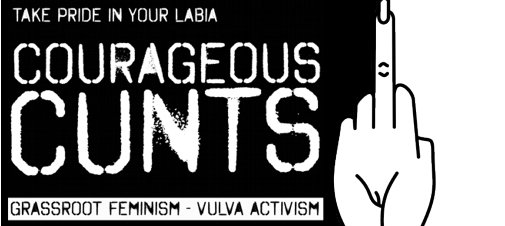


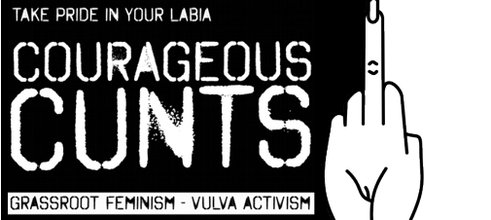



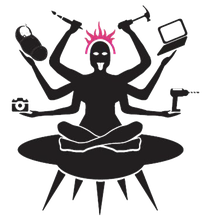
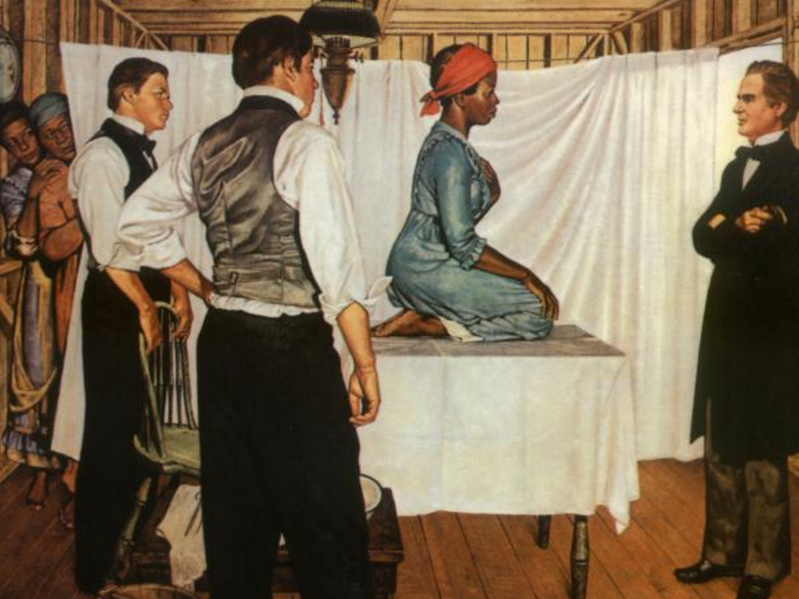
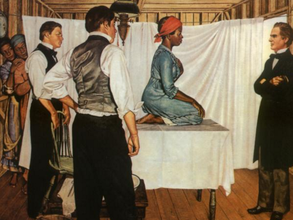



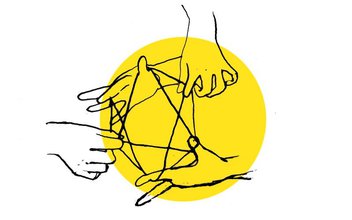

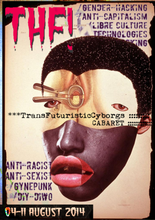

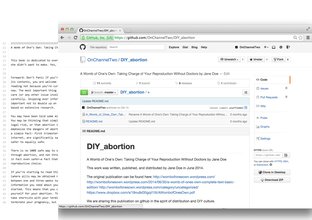



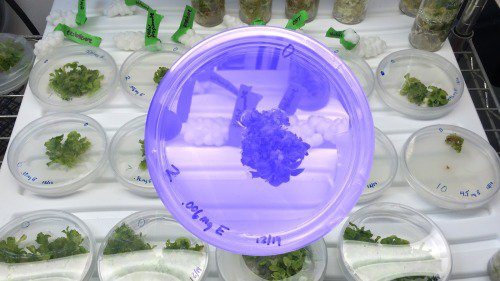




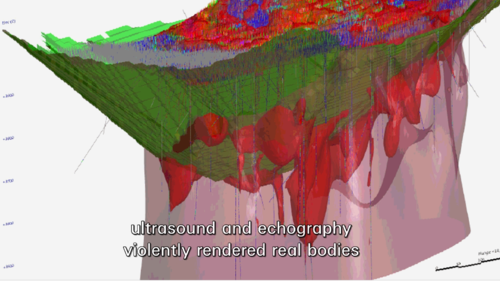
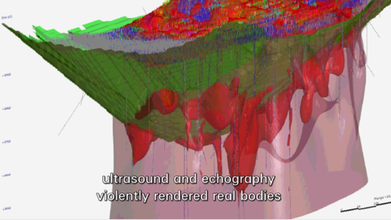







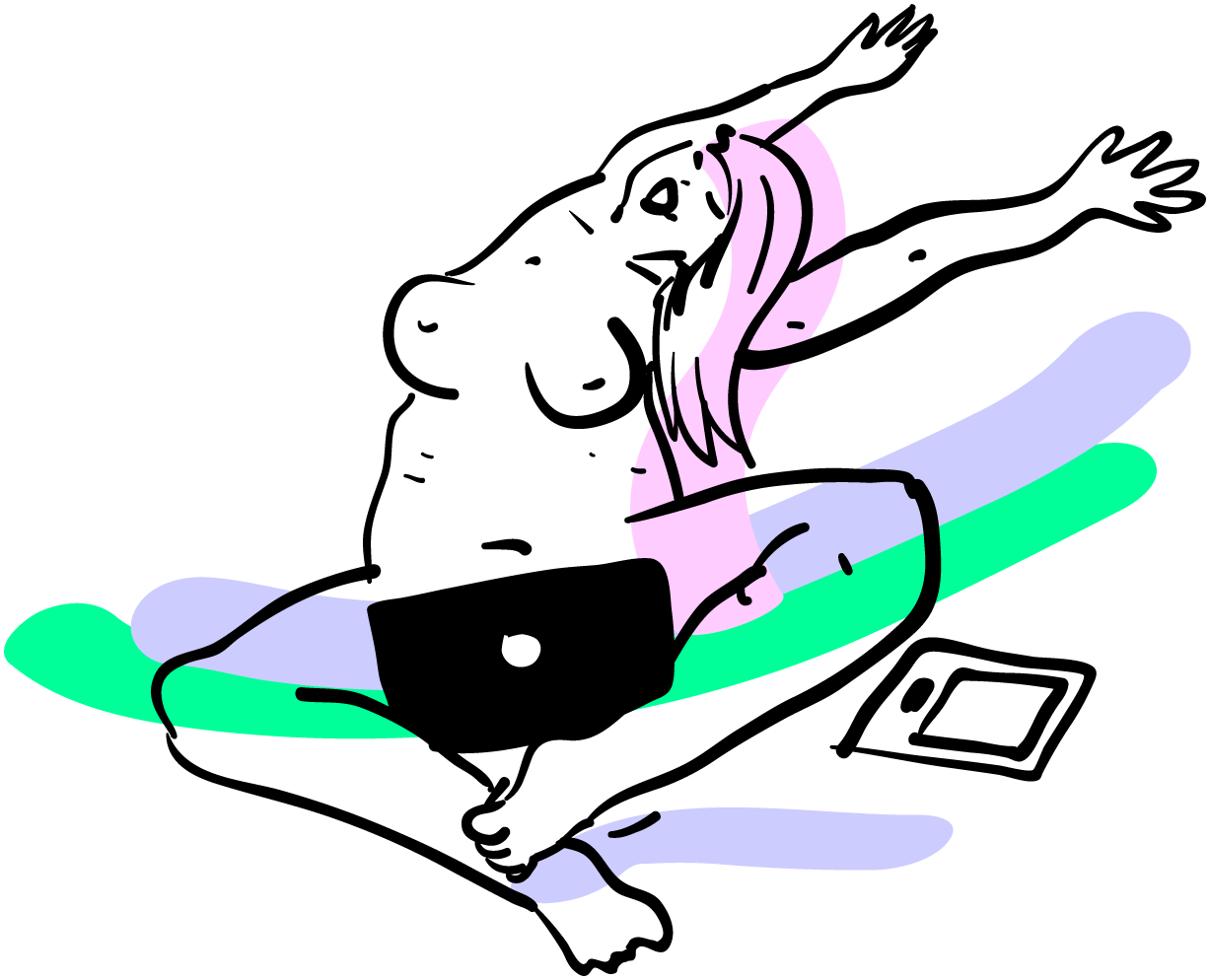
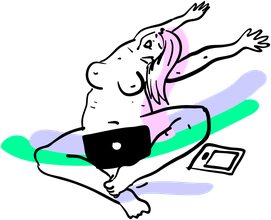


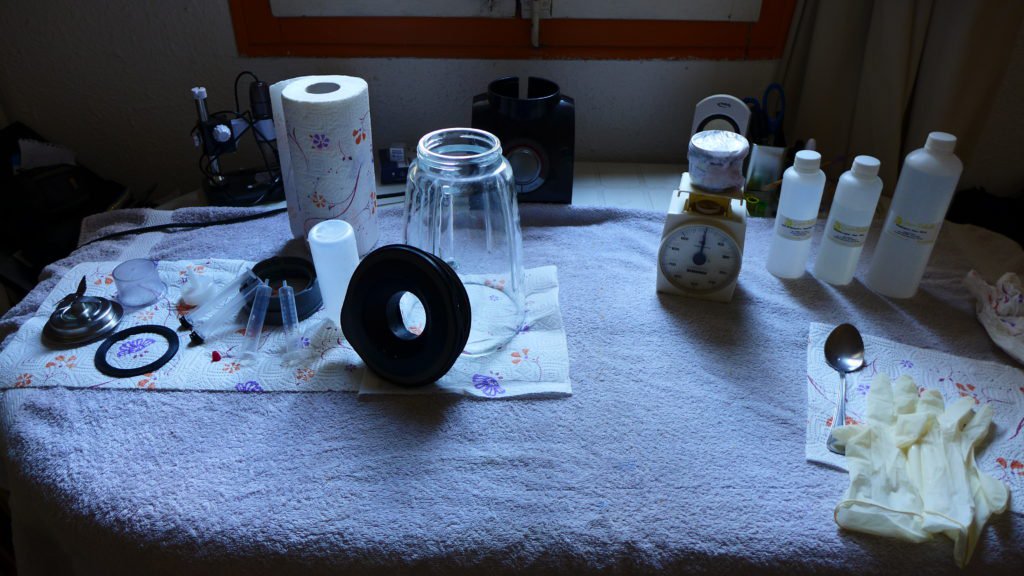
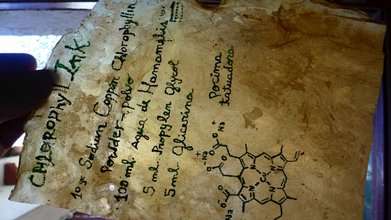


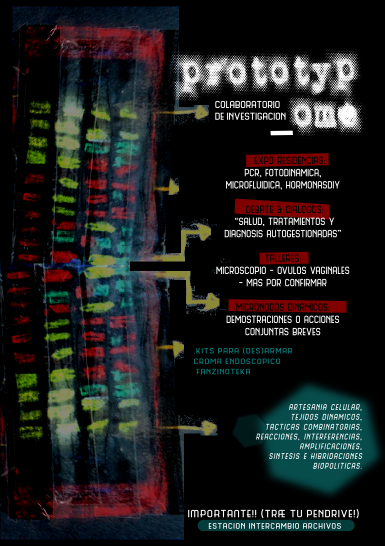
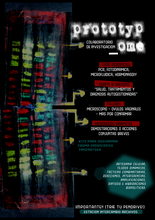
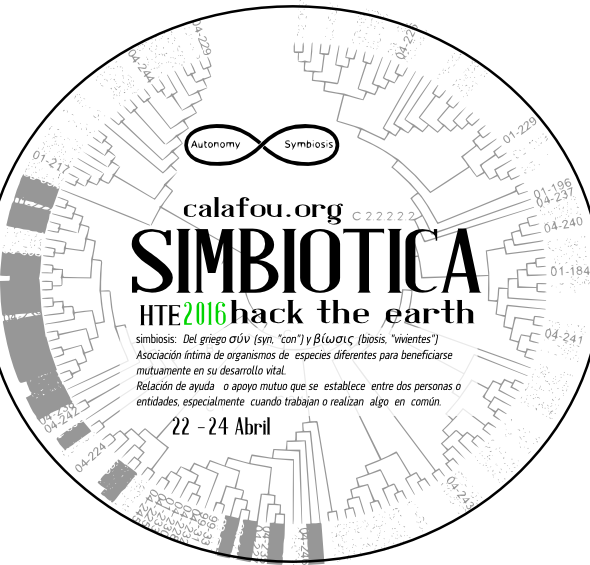
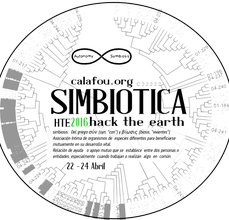
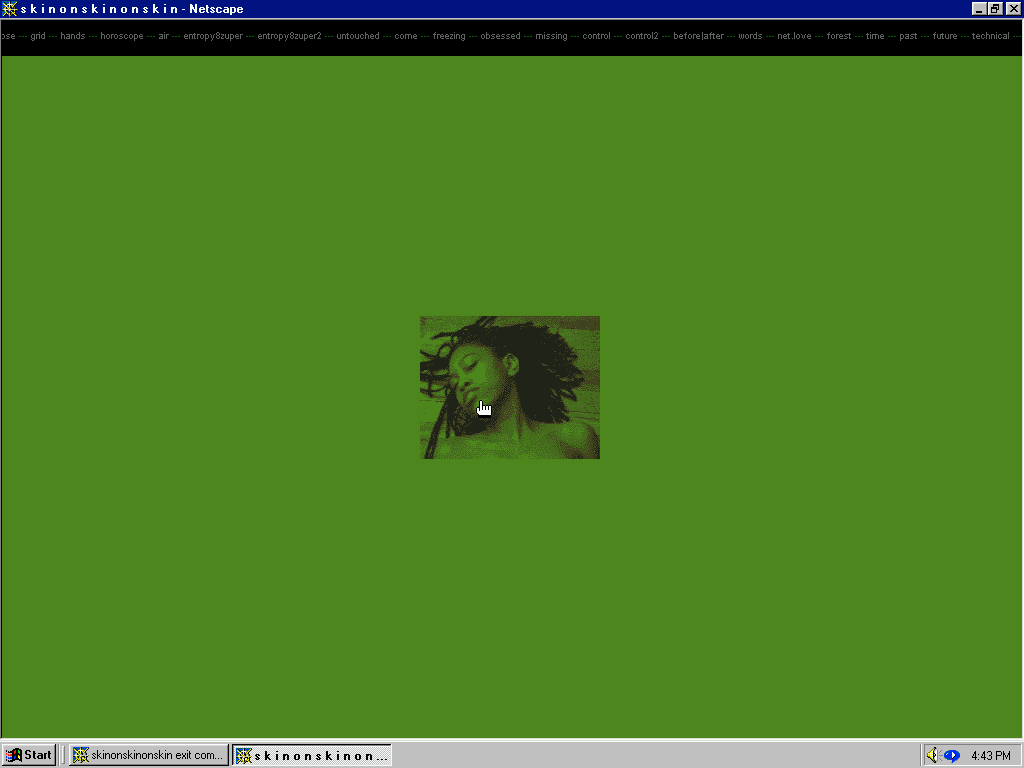
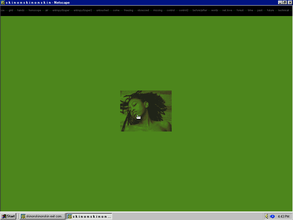

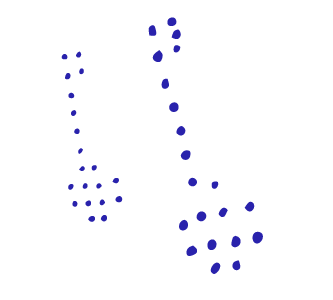

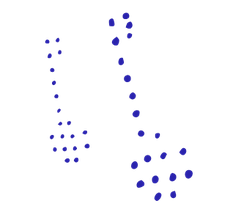
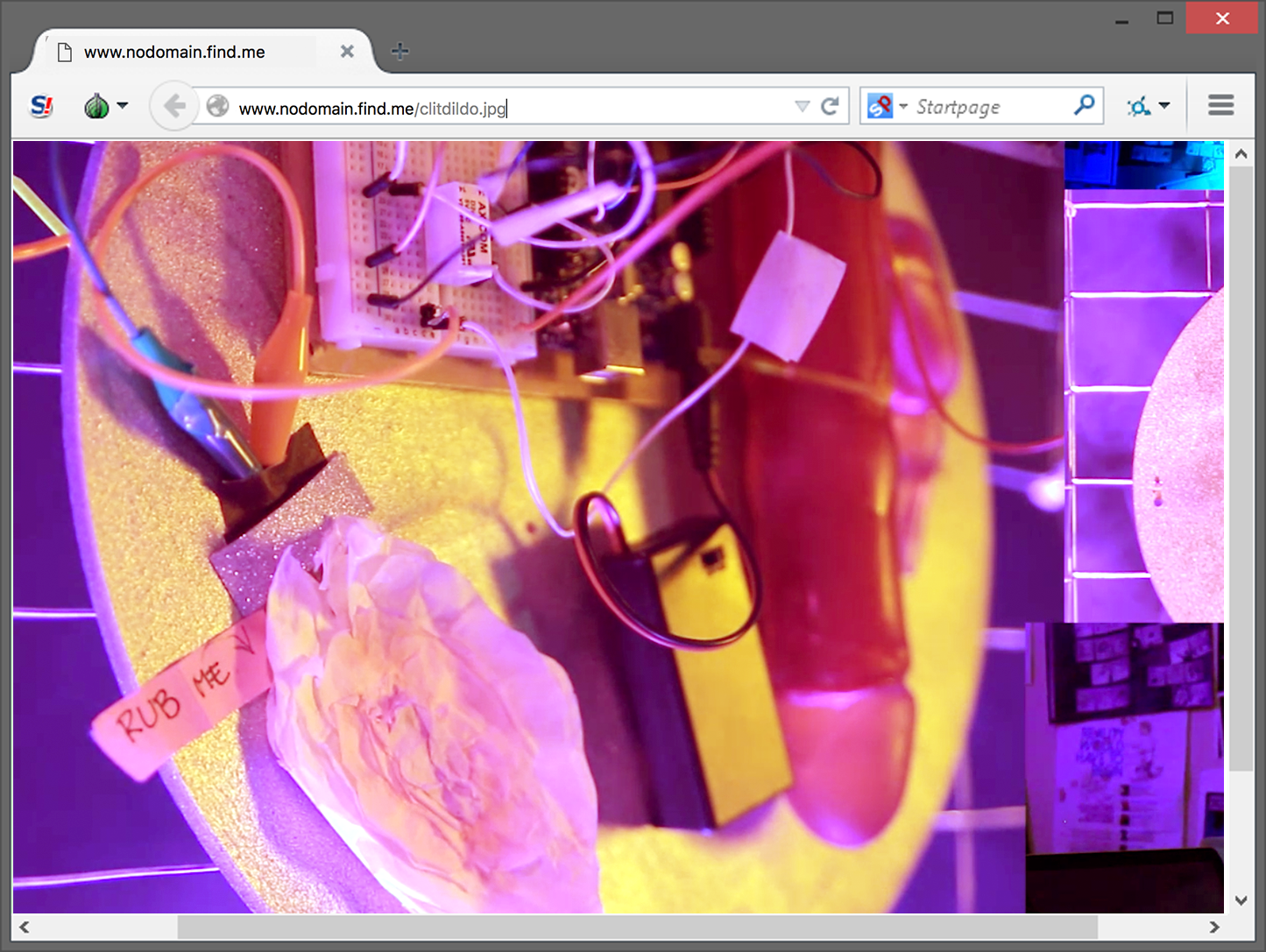
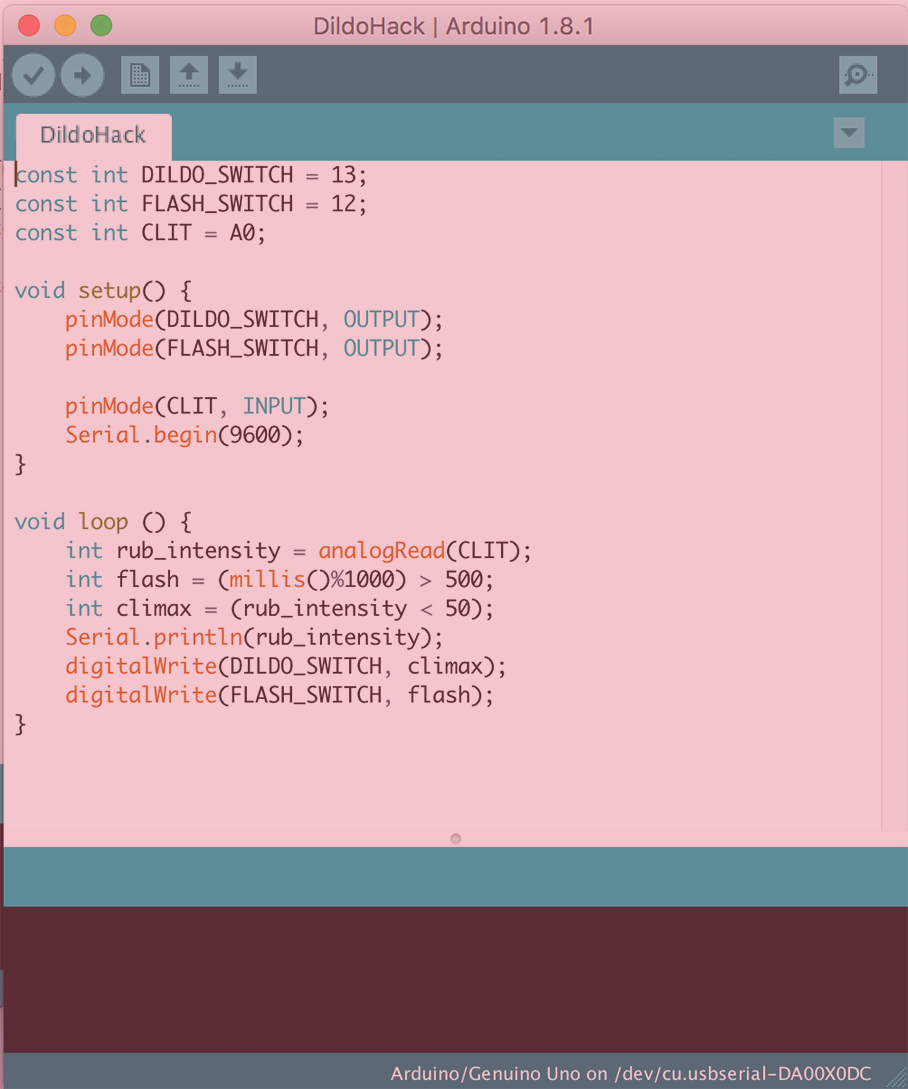
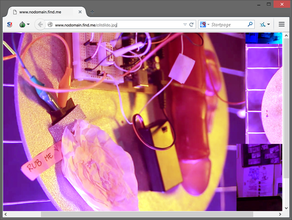
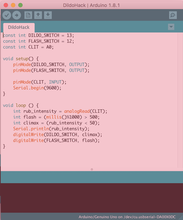






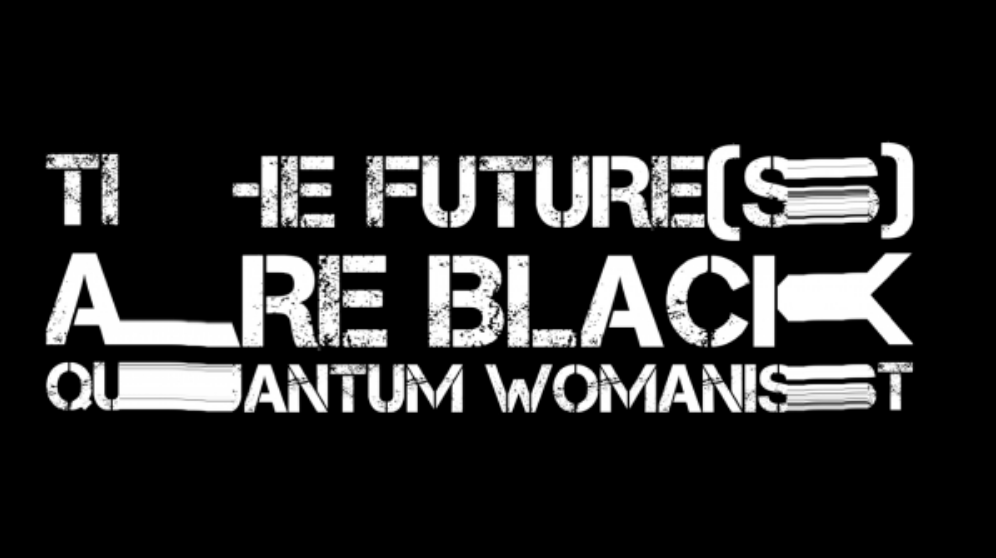

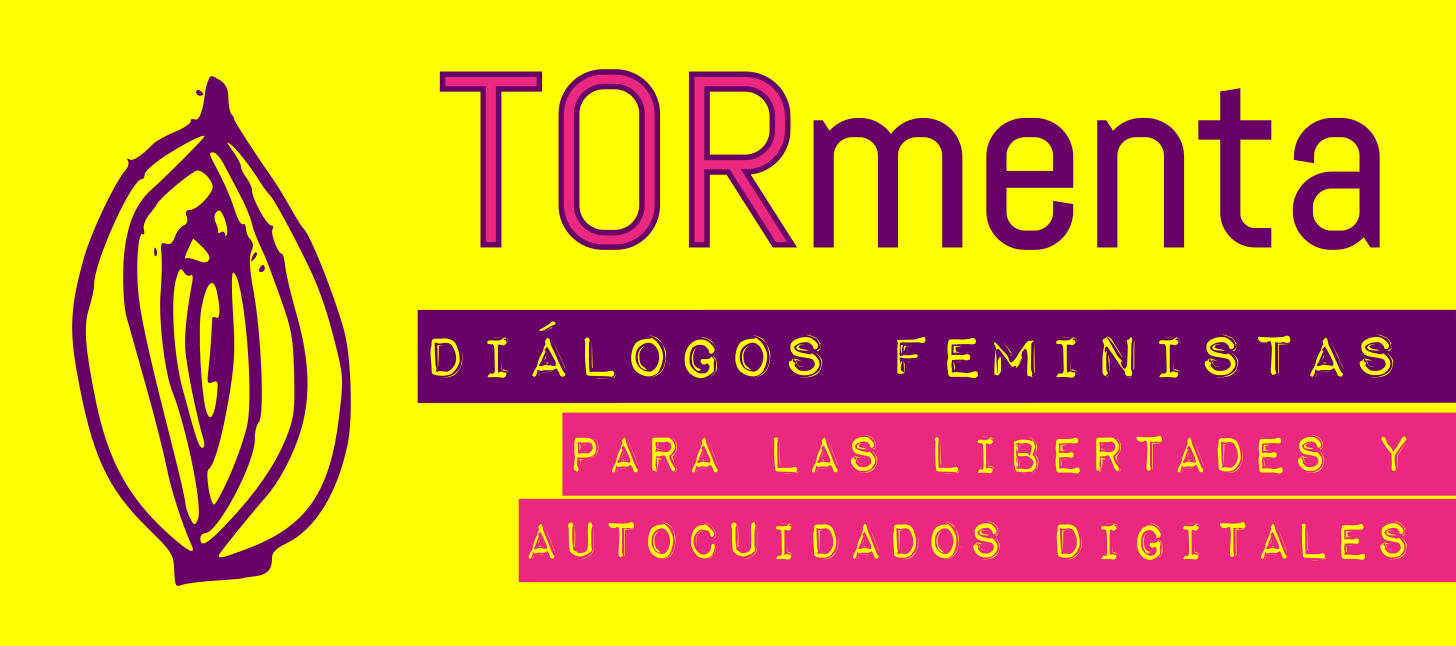
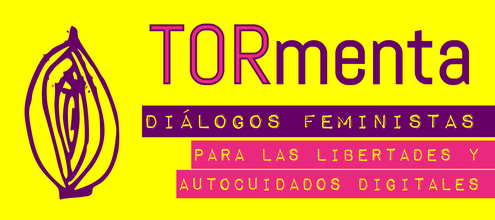
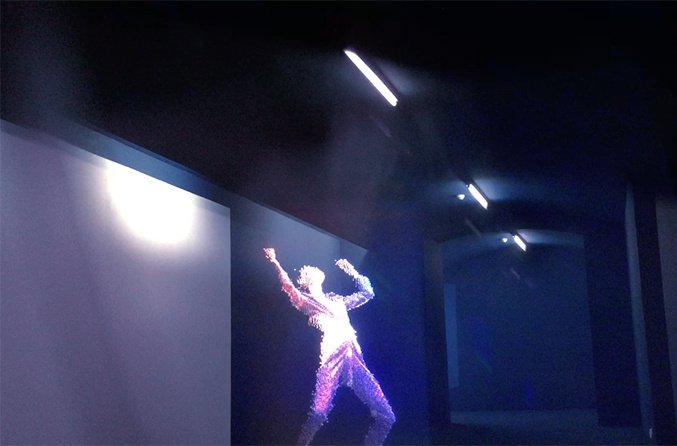




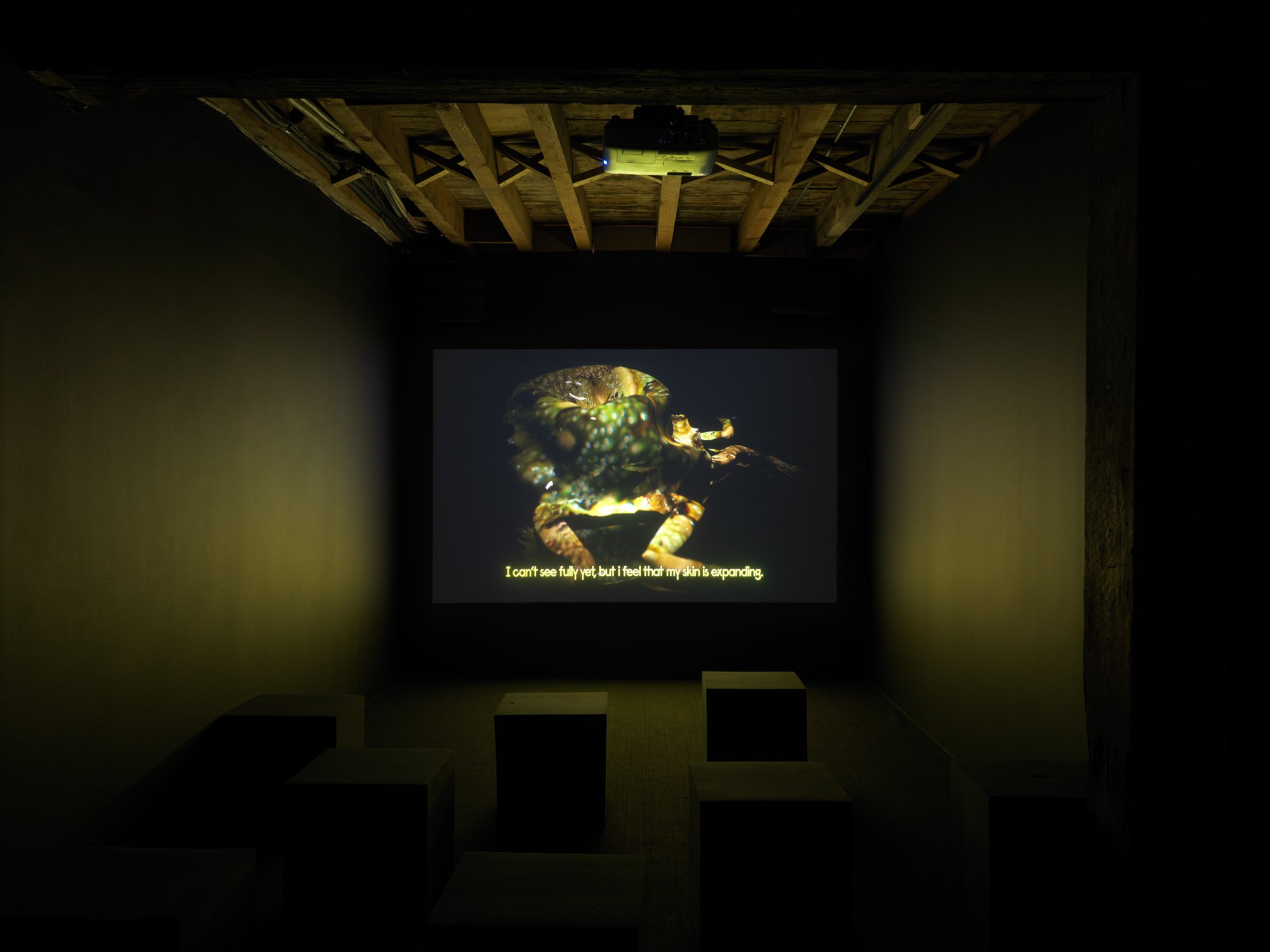



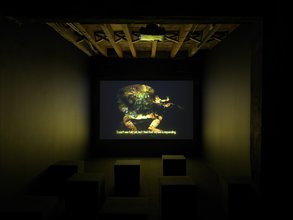
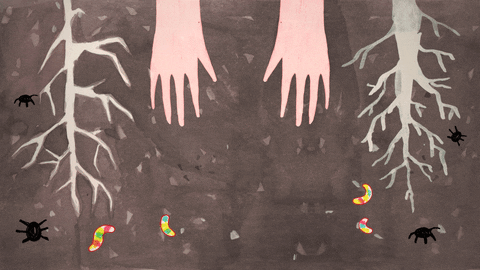
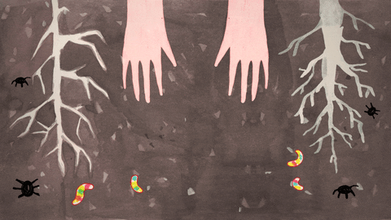



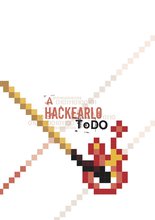
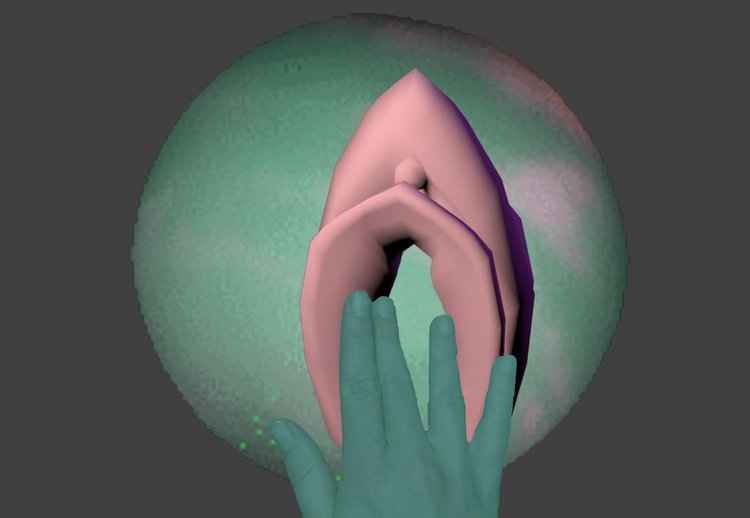
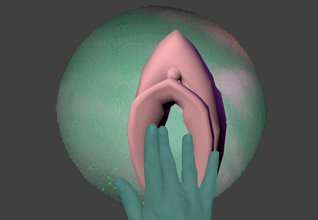
(563)
2016
Social Life of DNA
Alondra Nelson